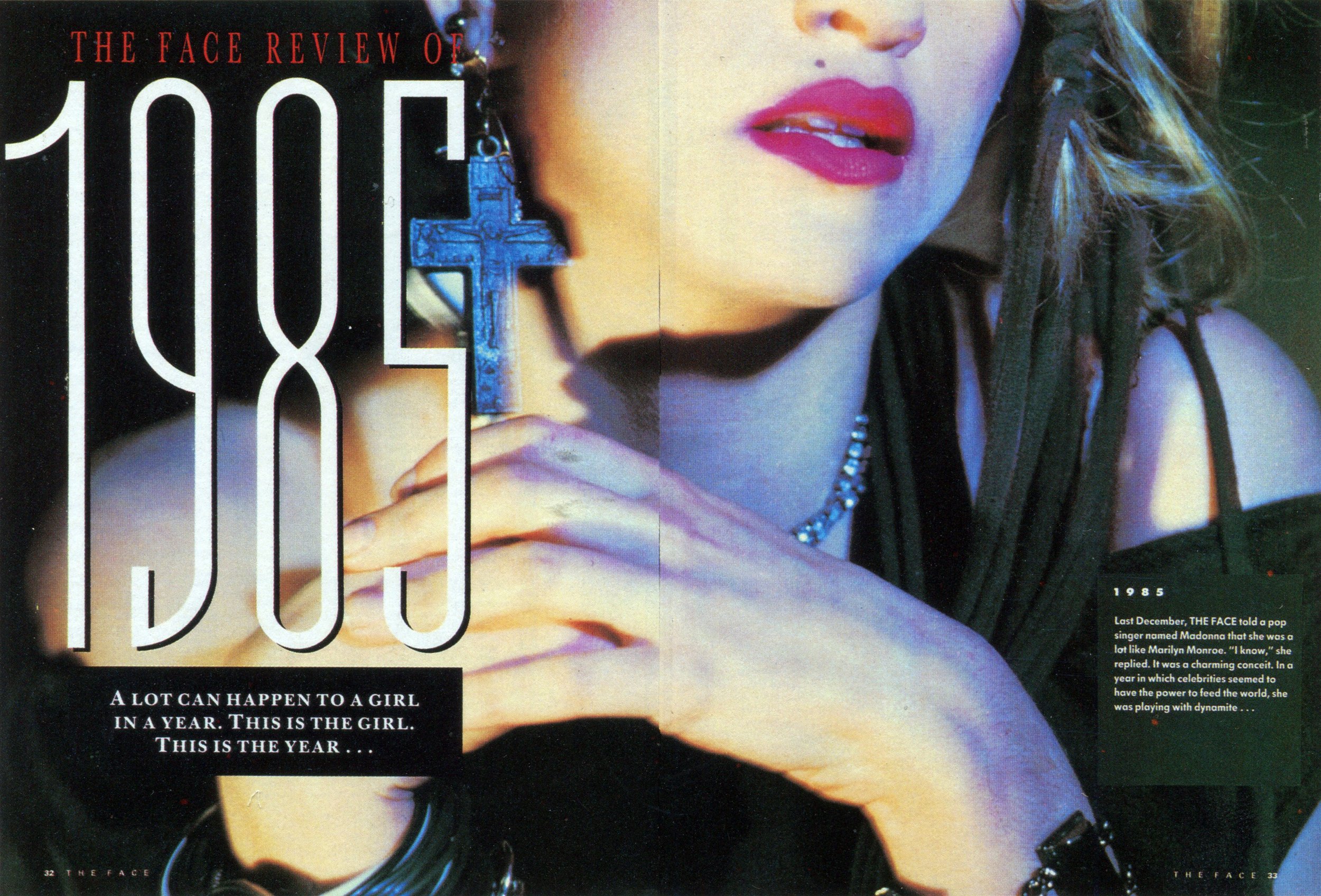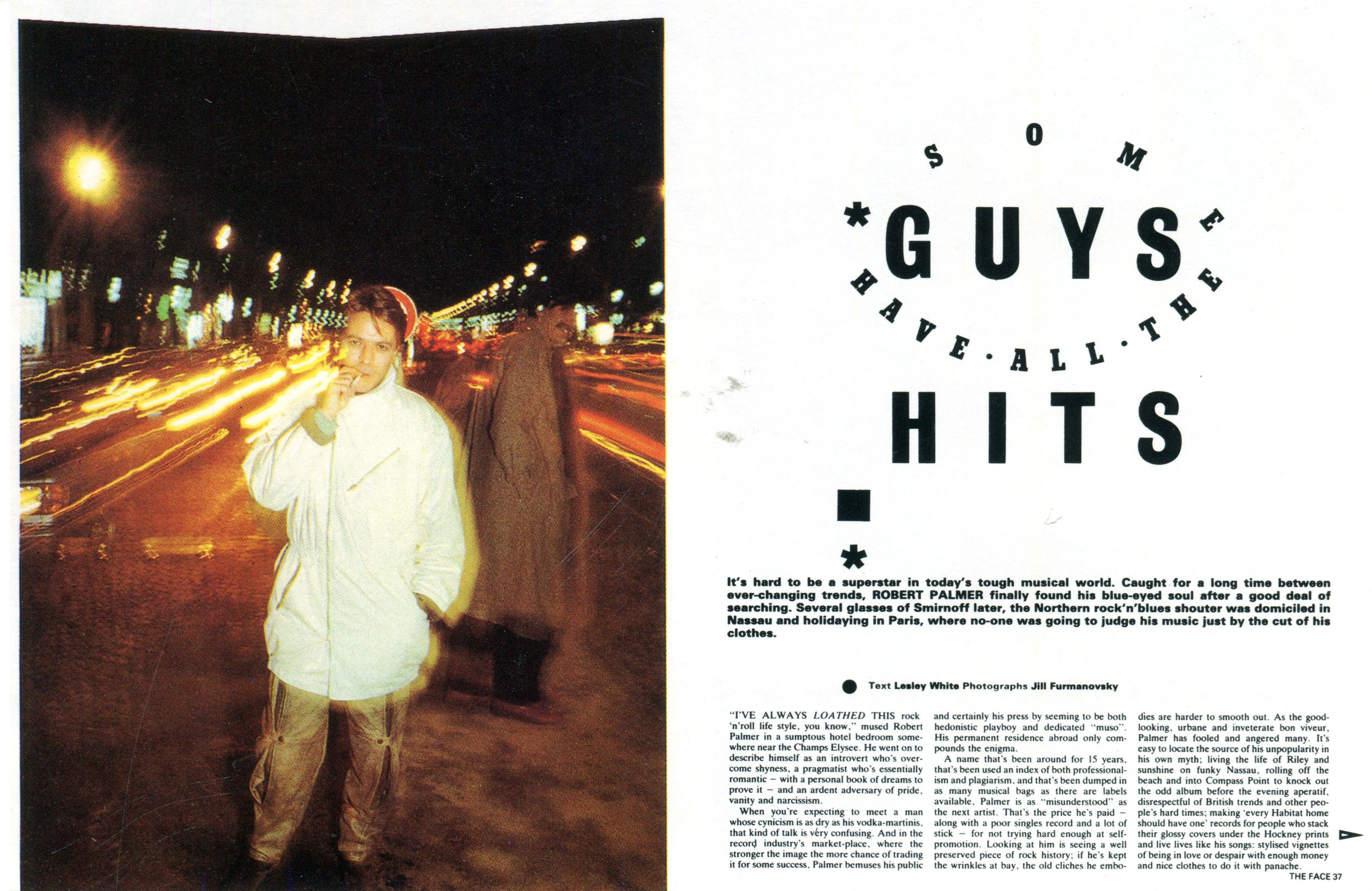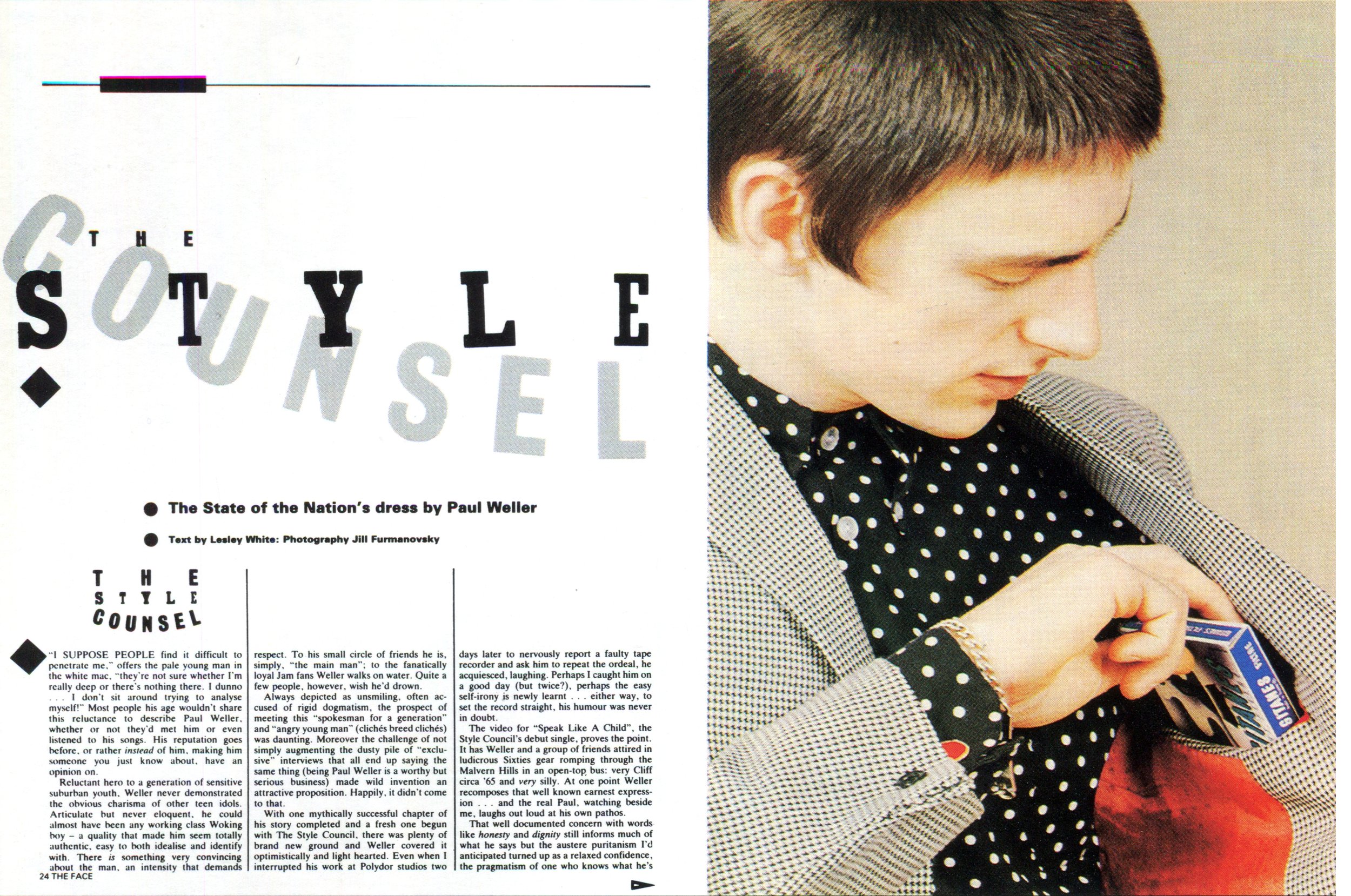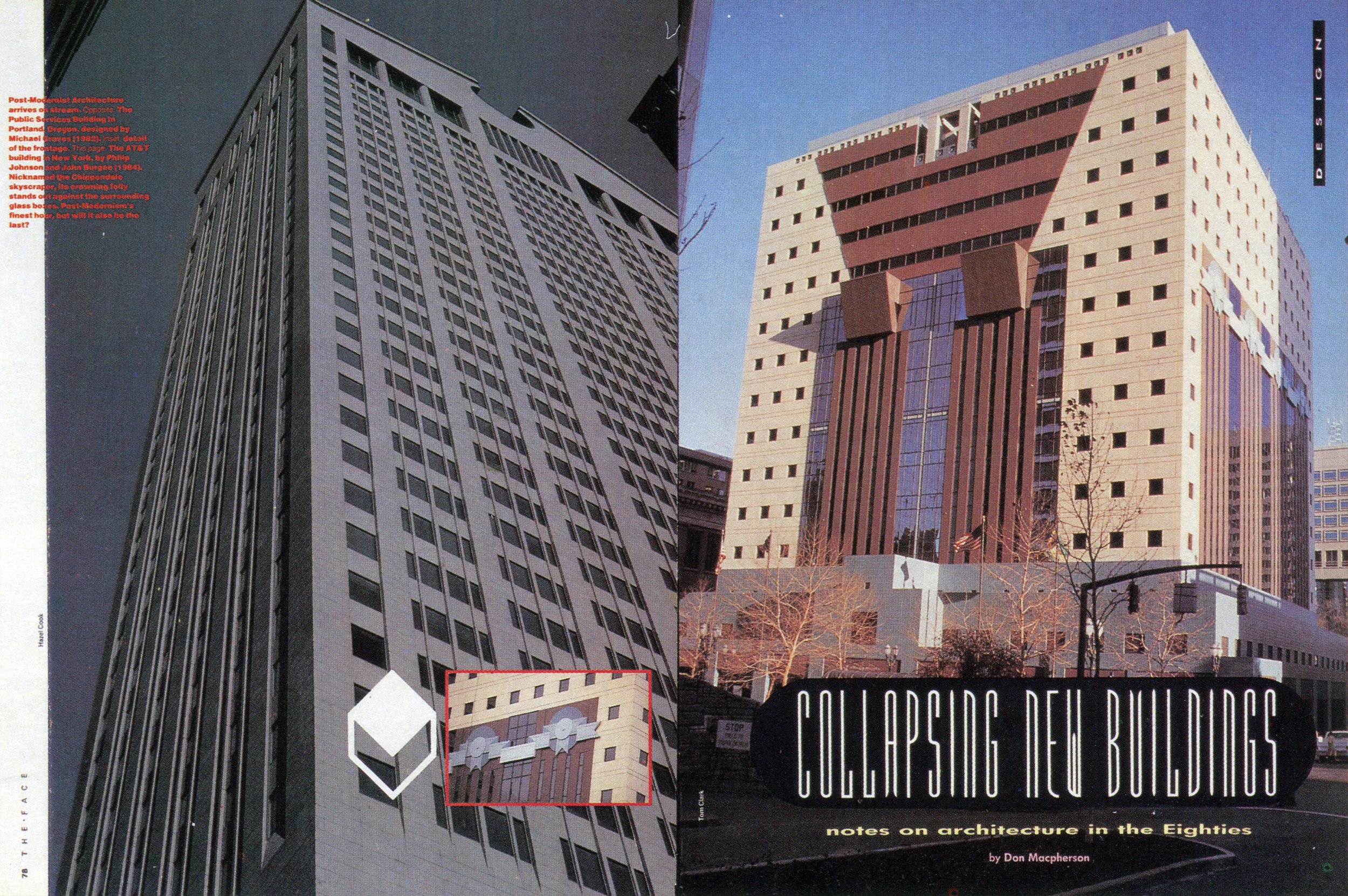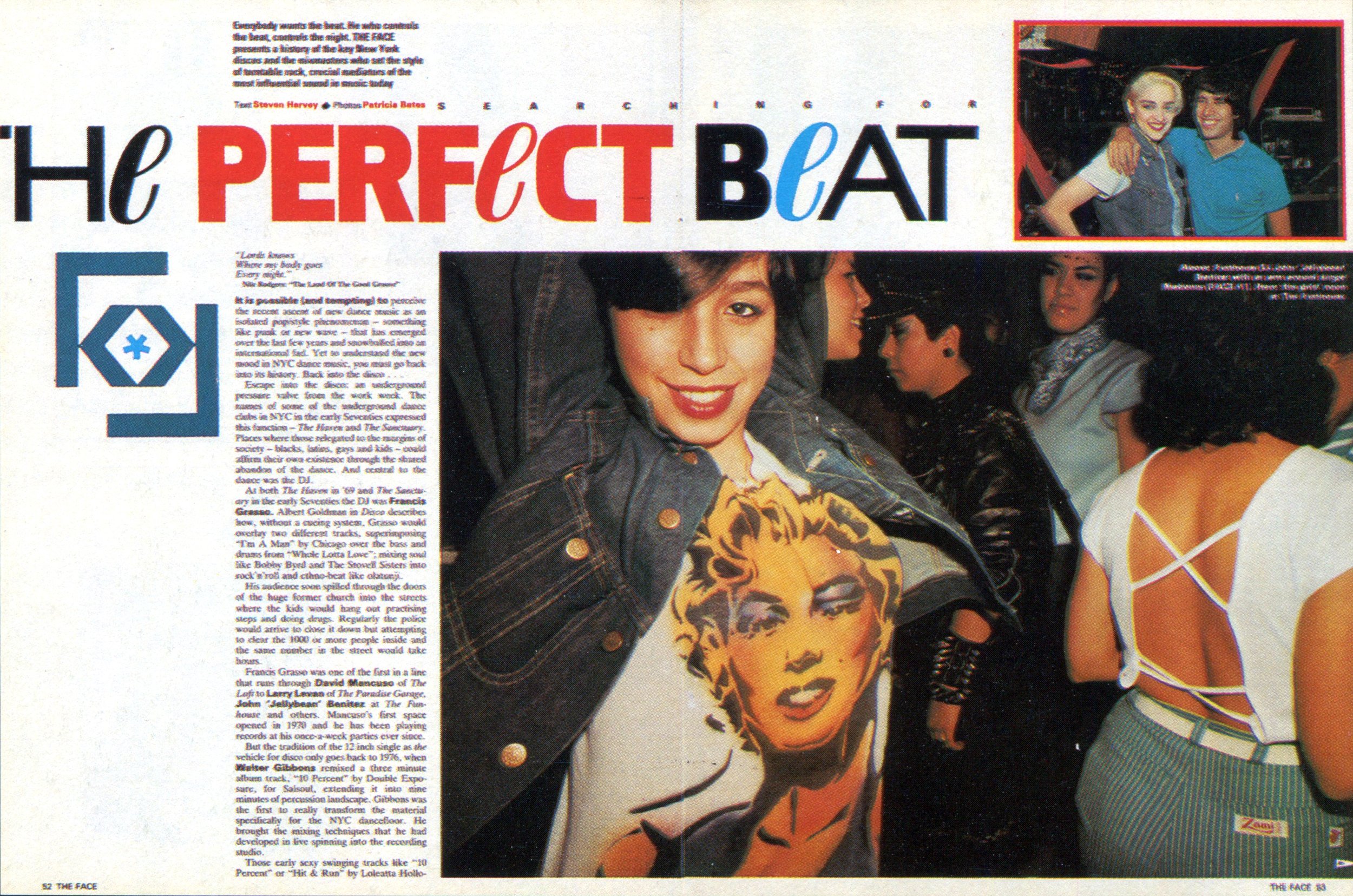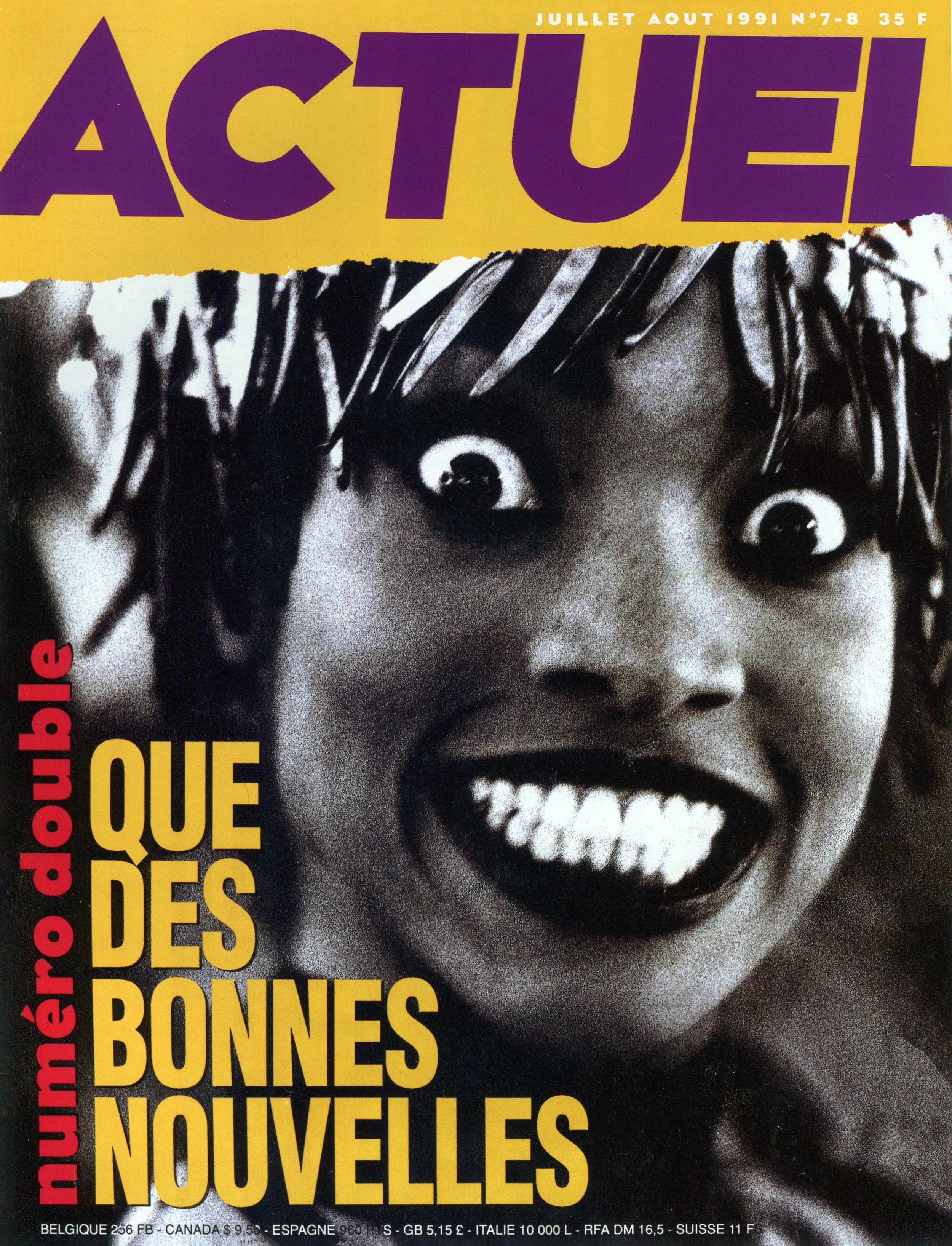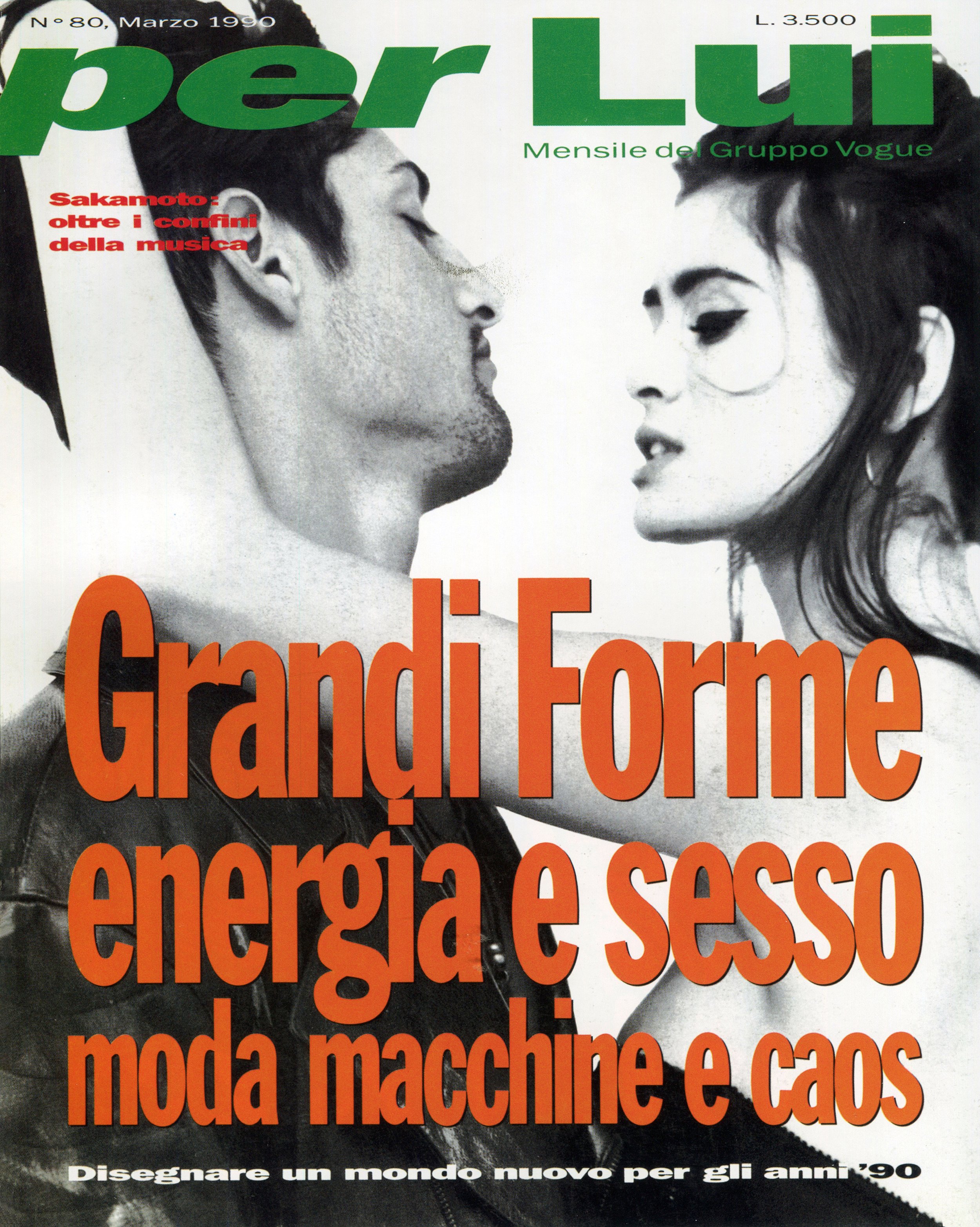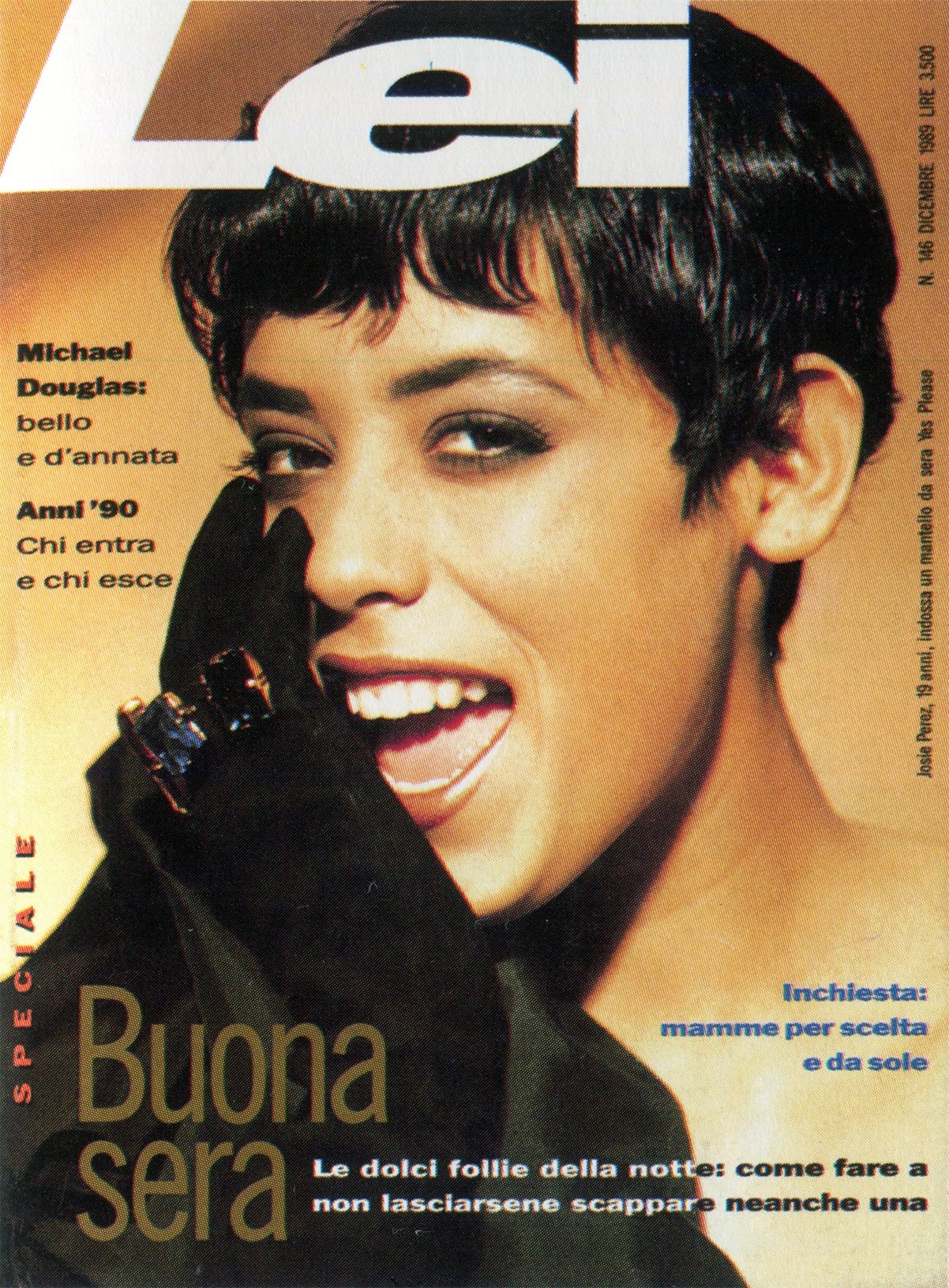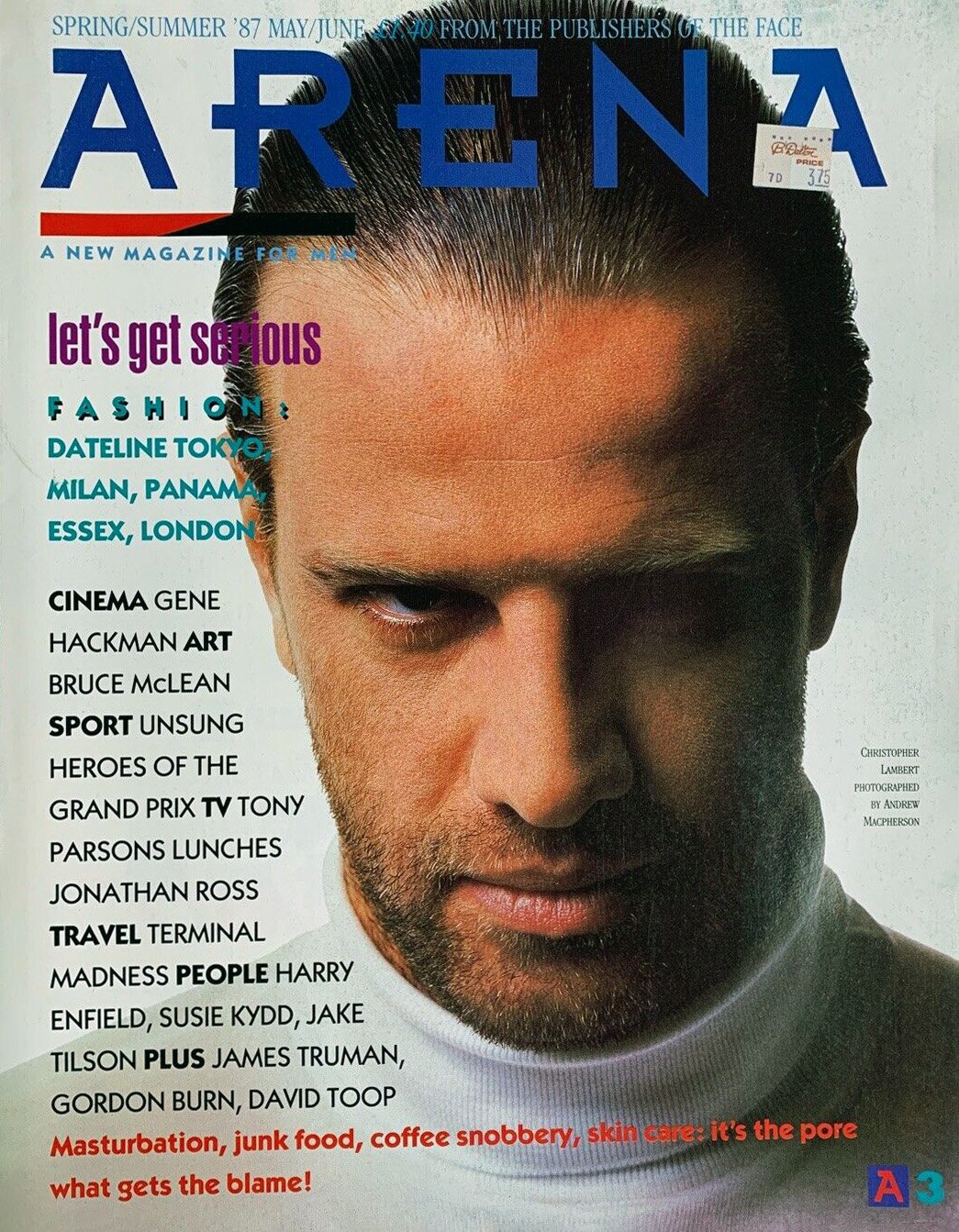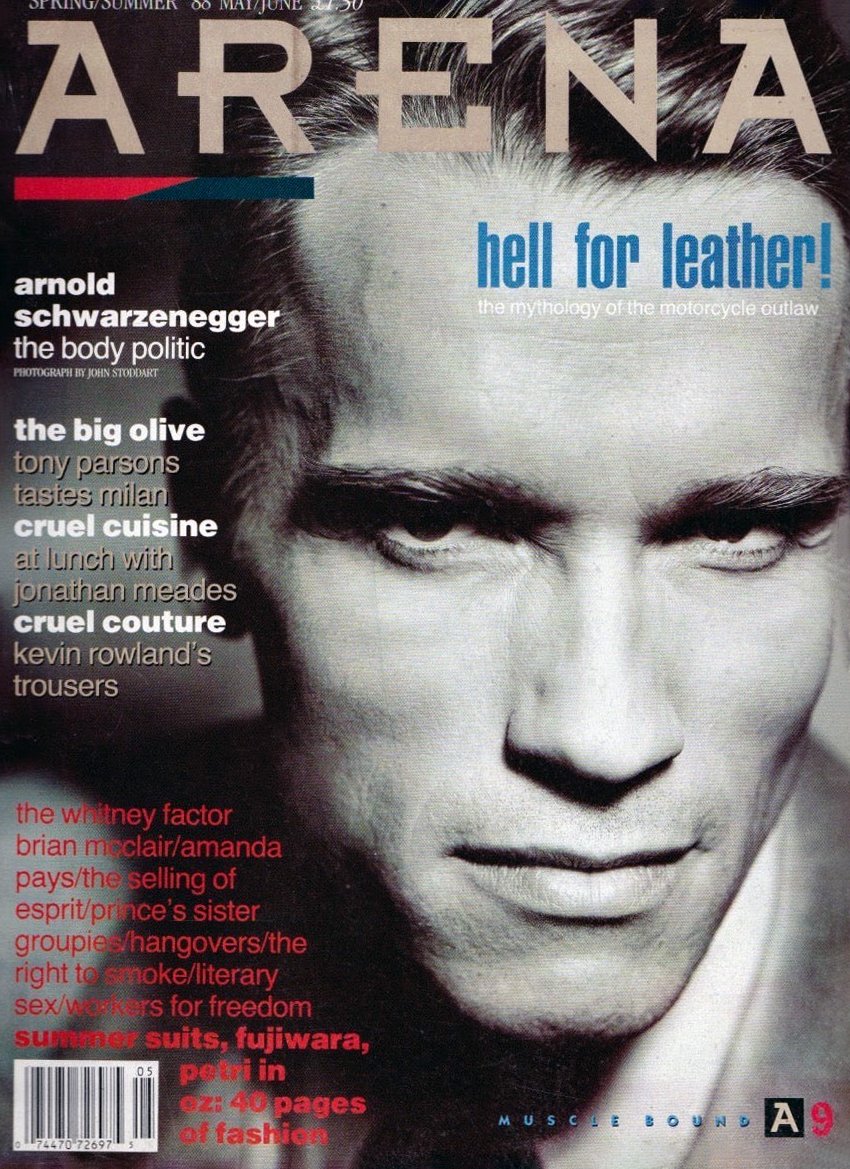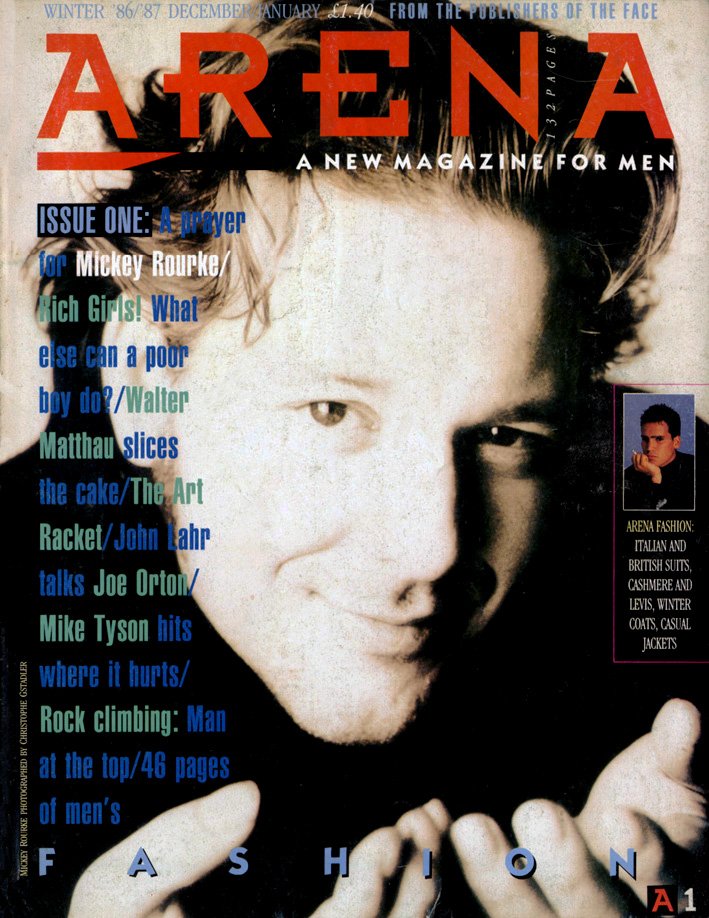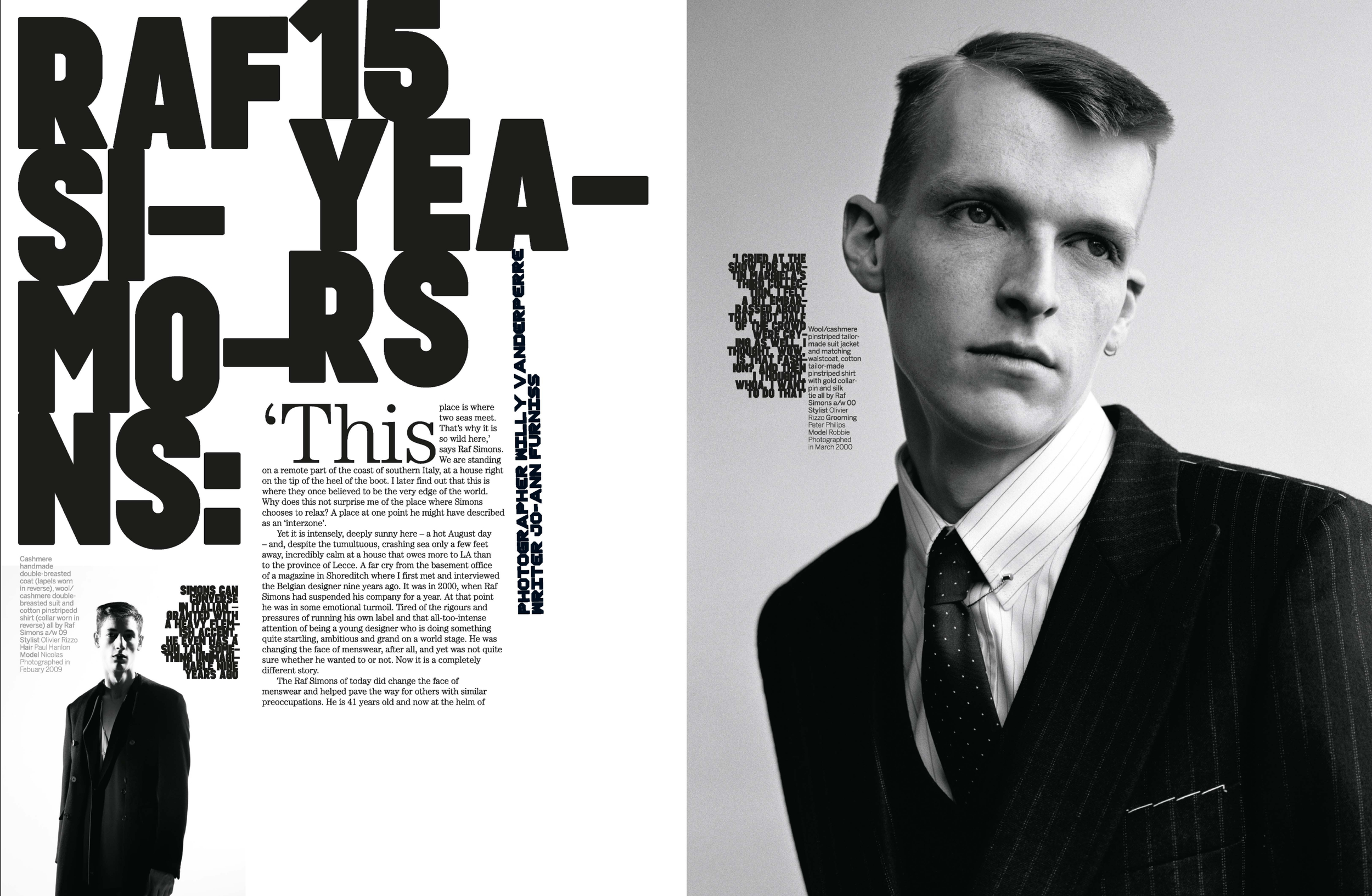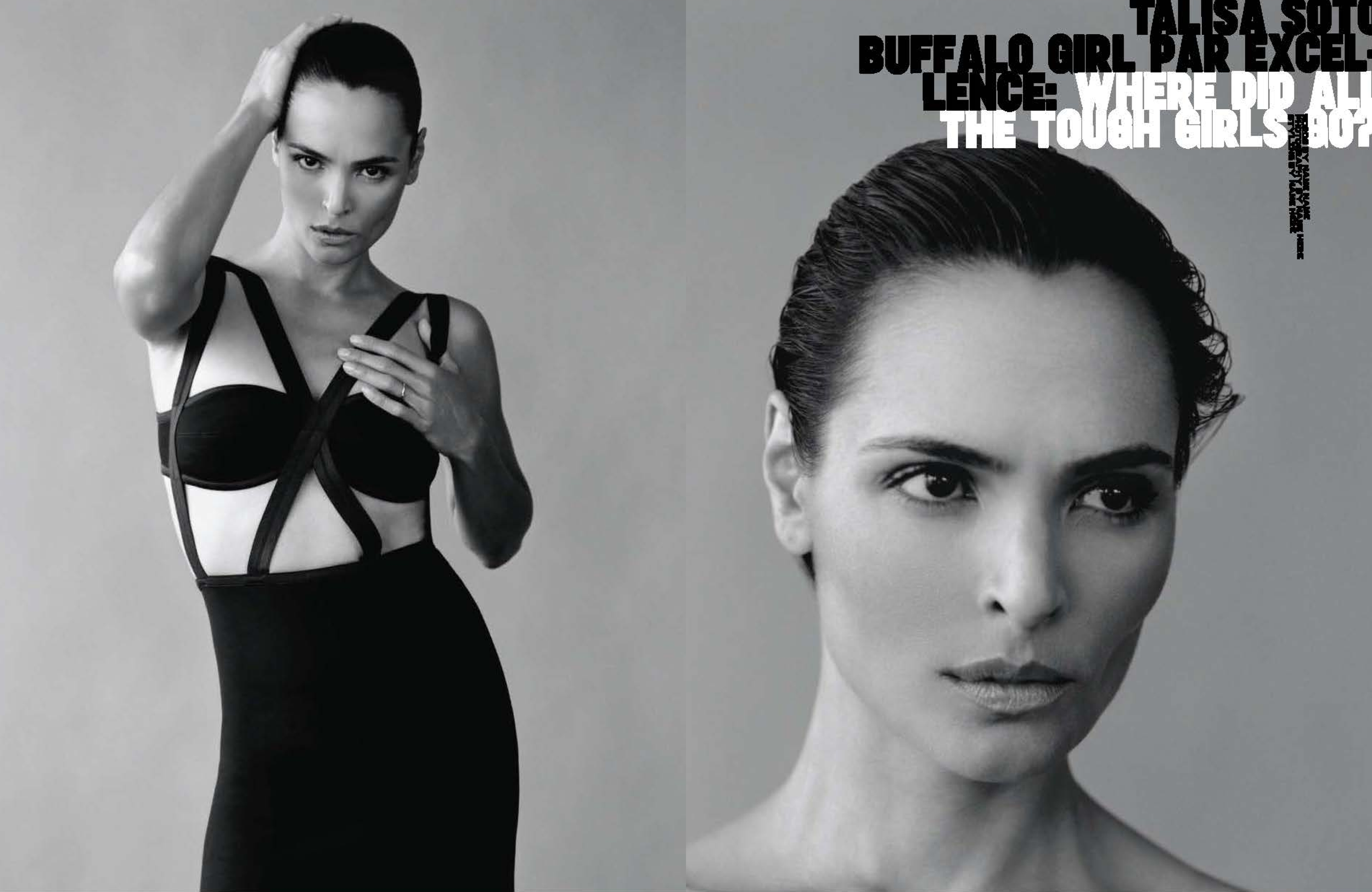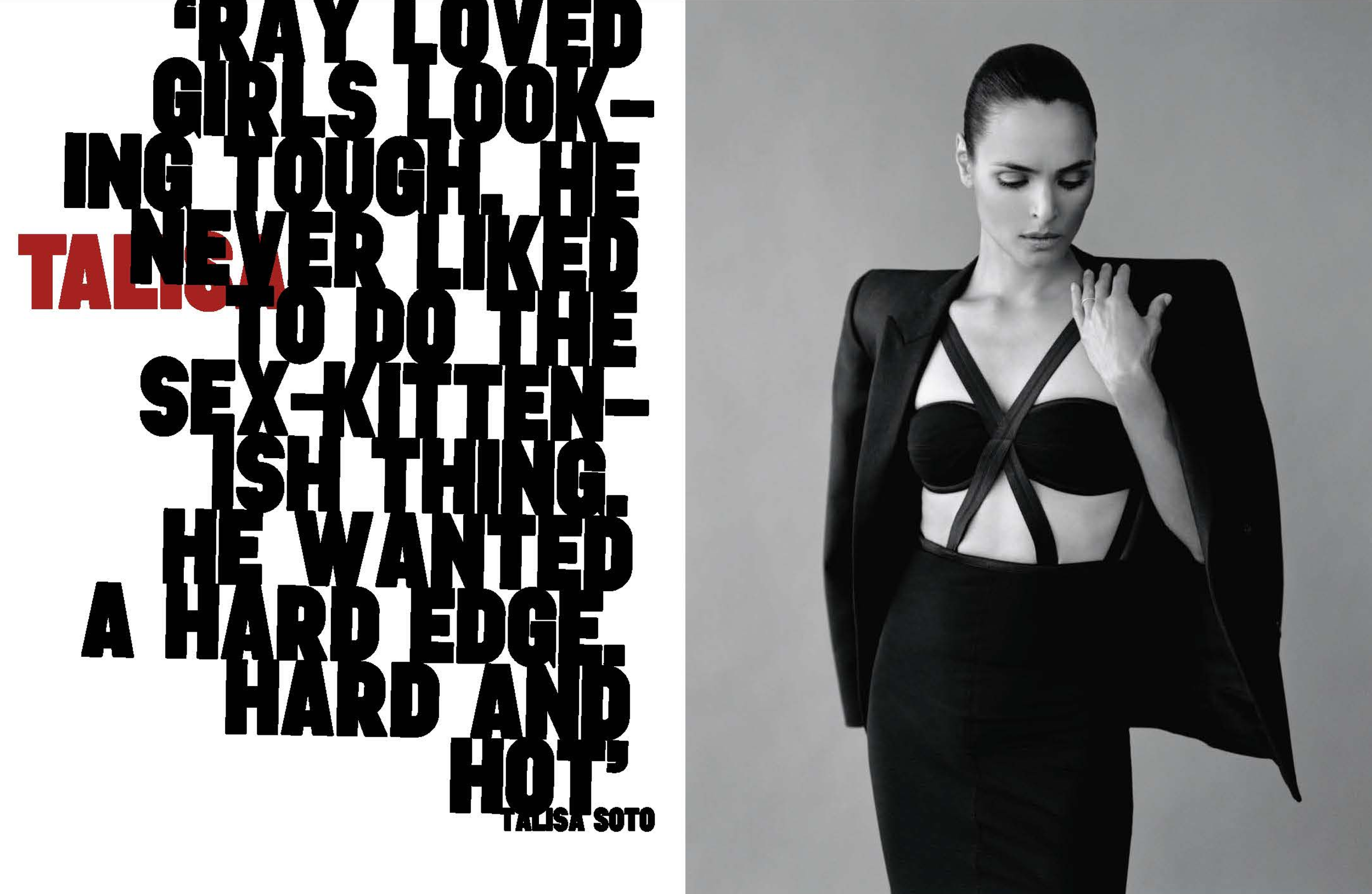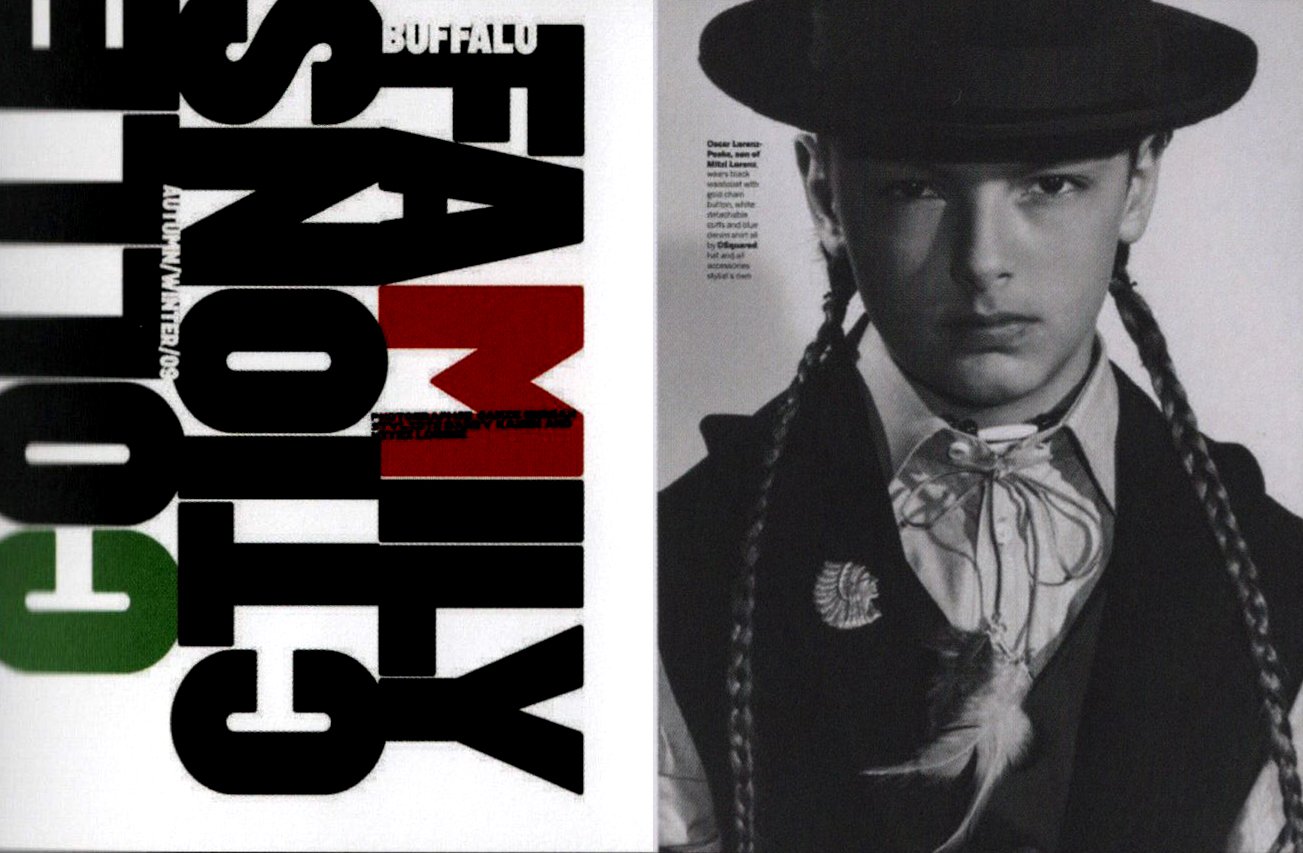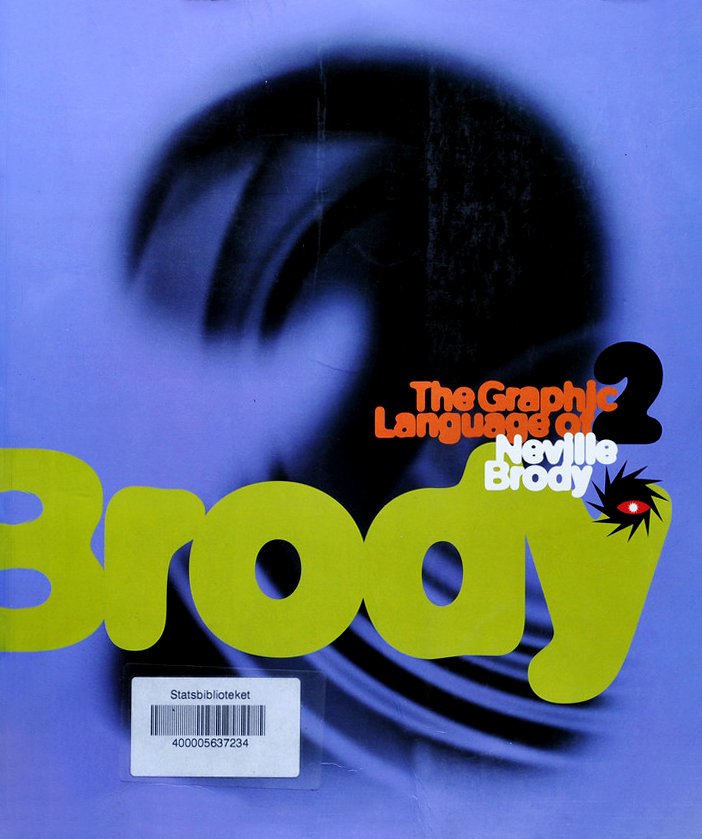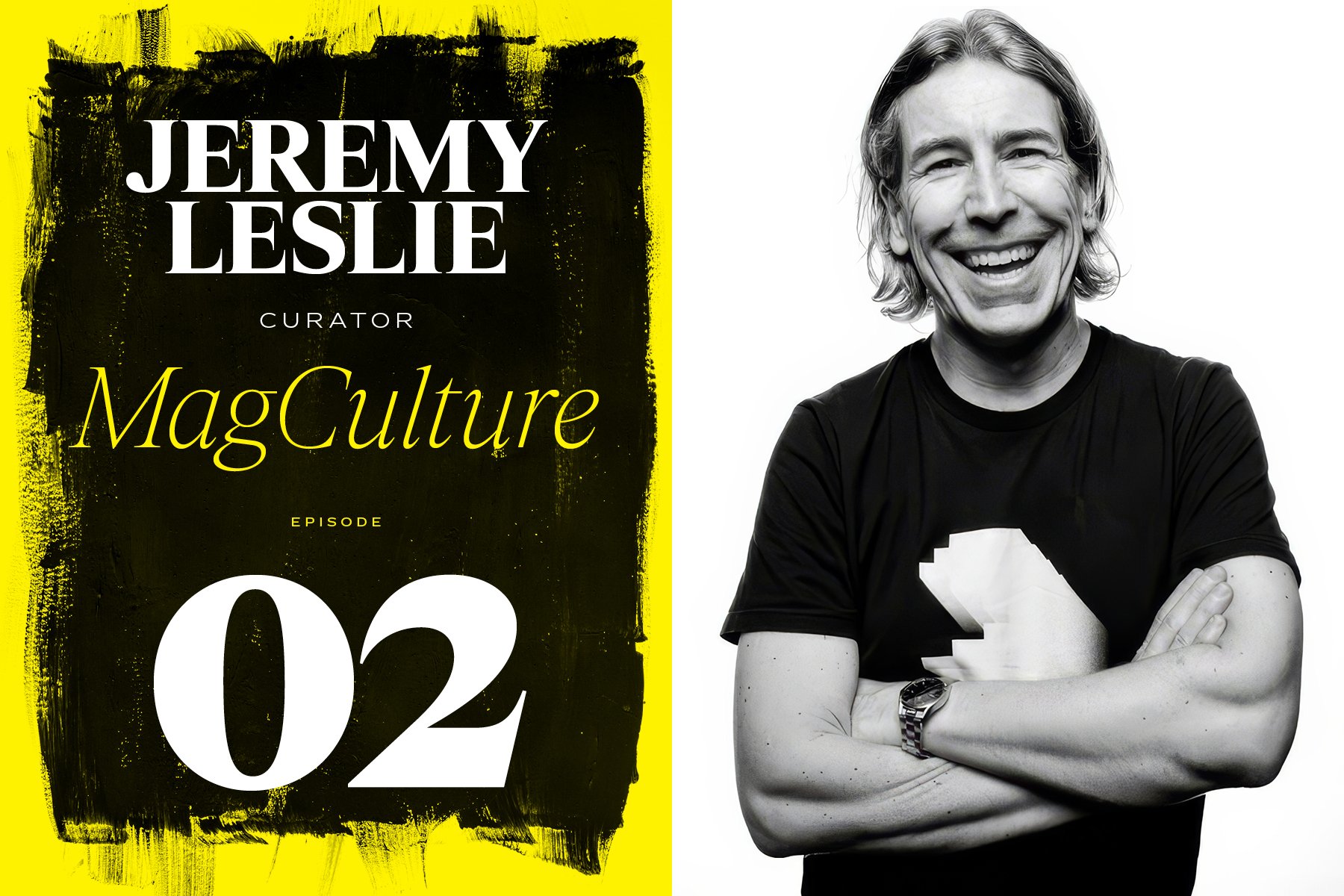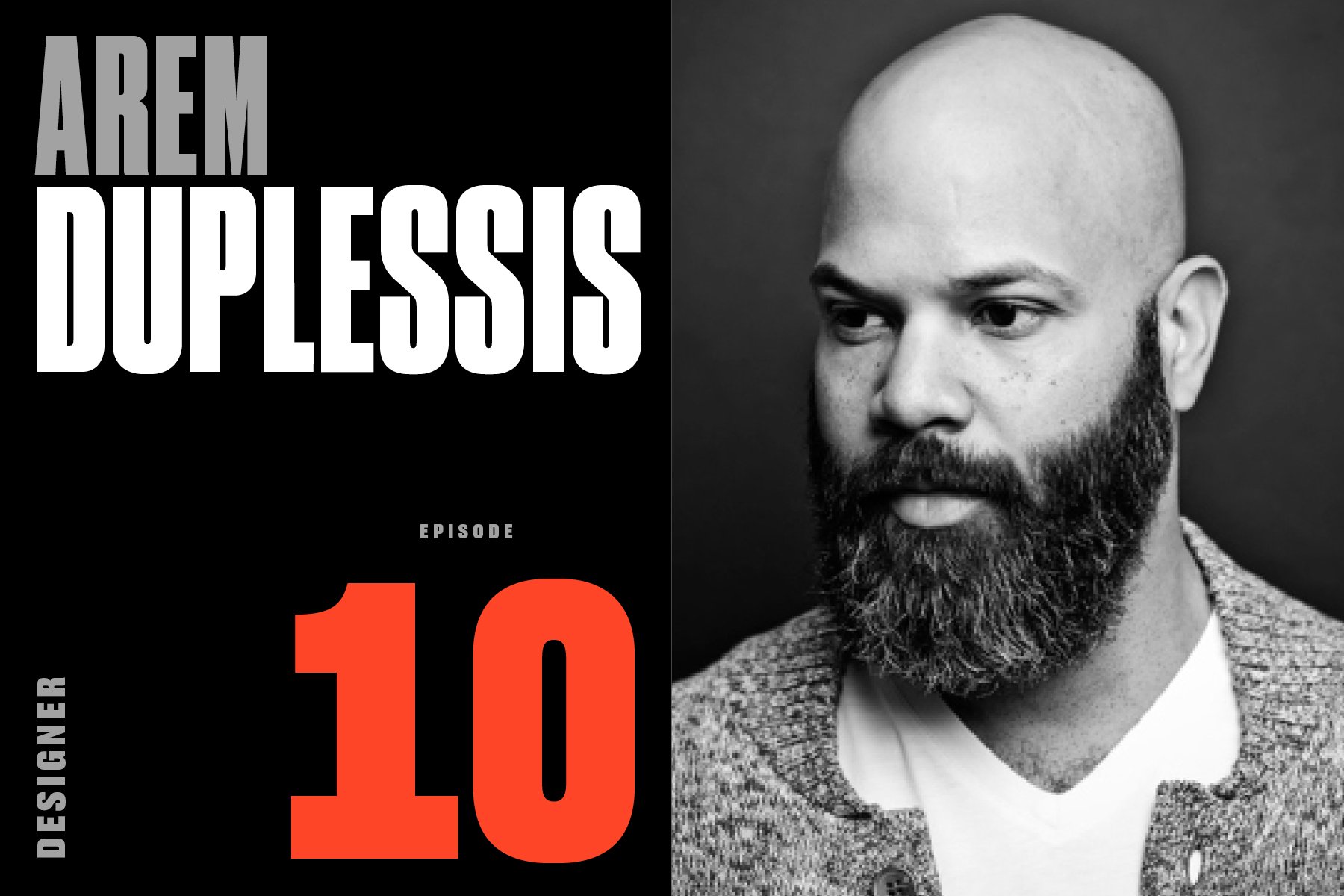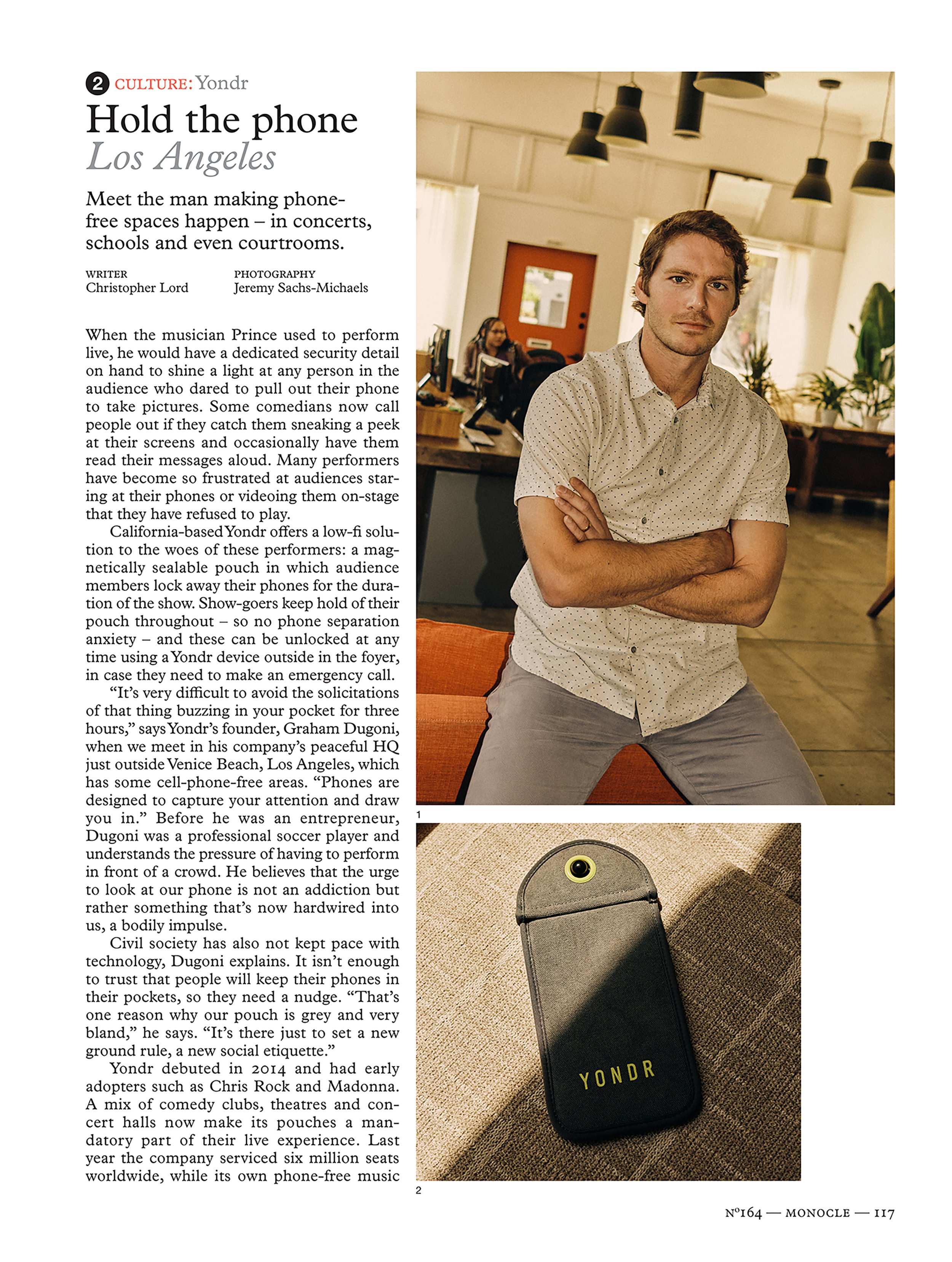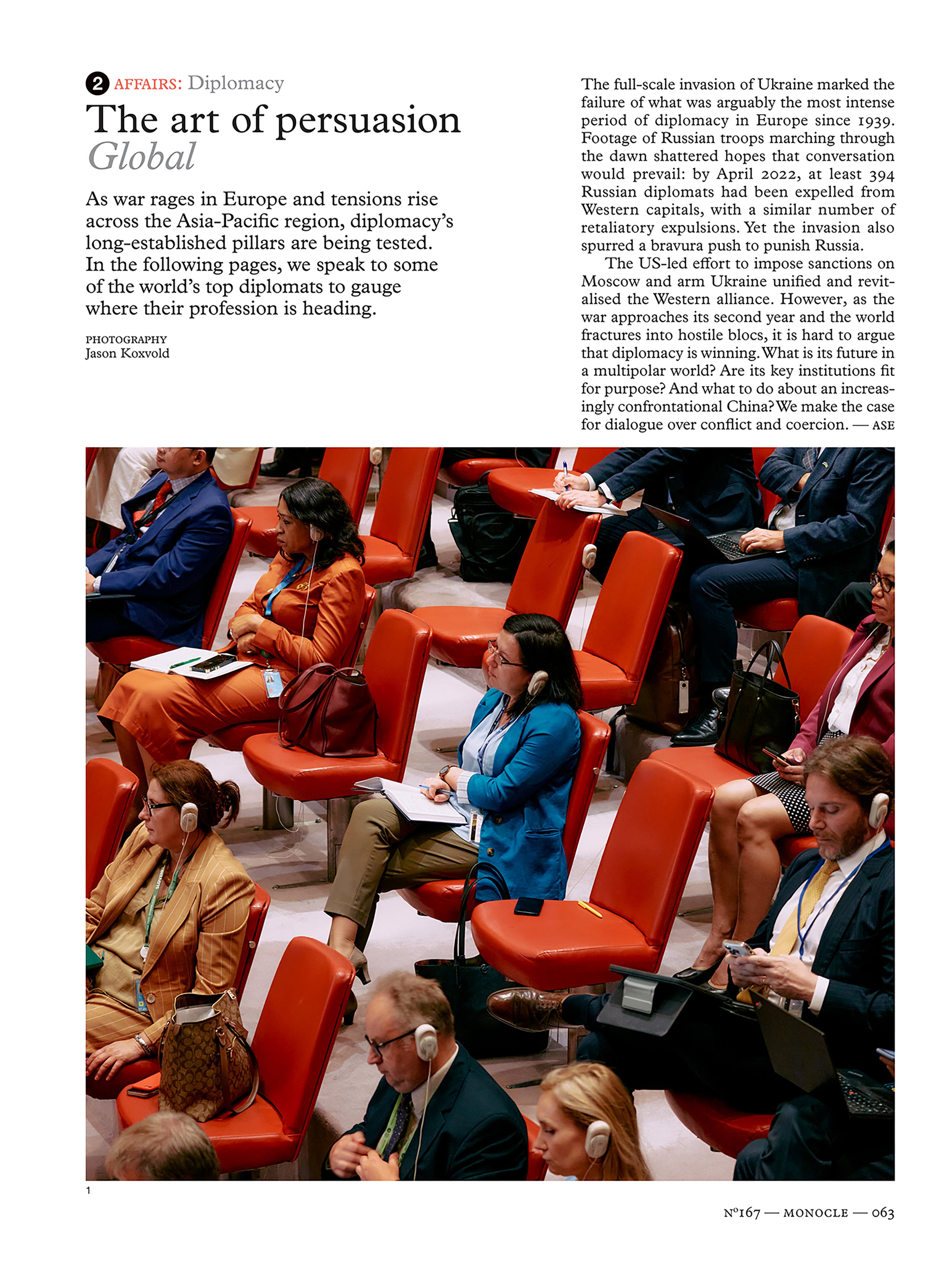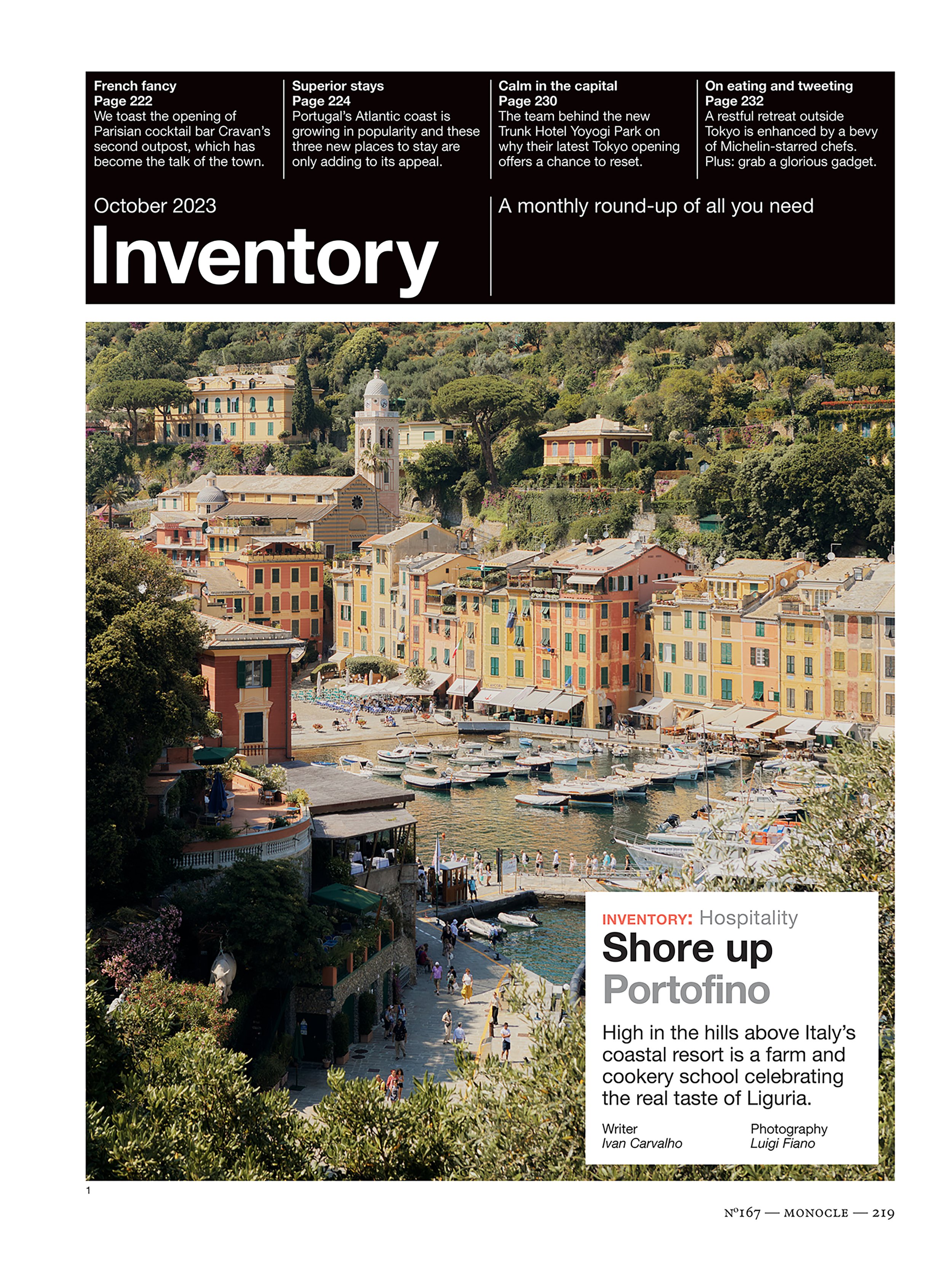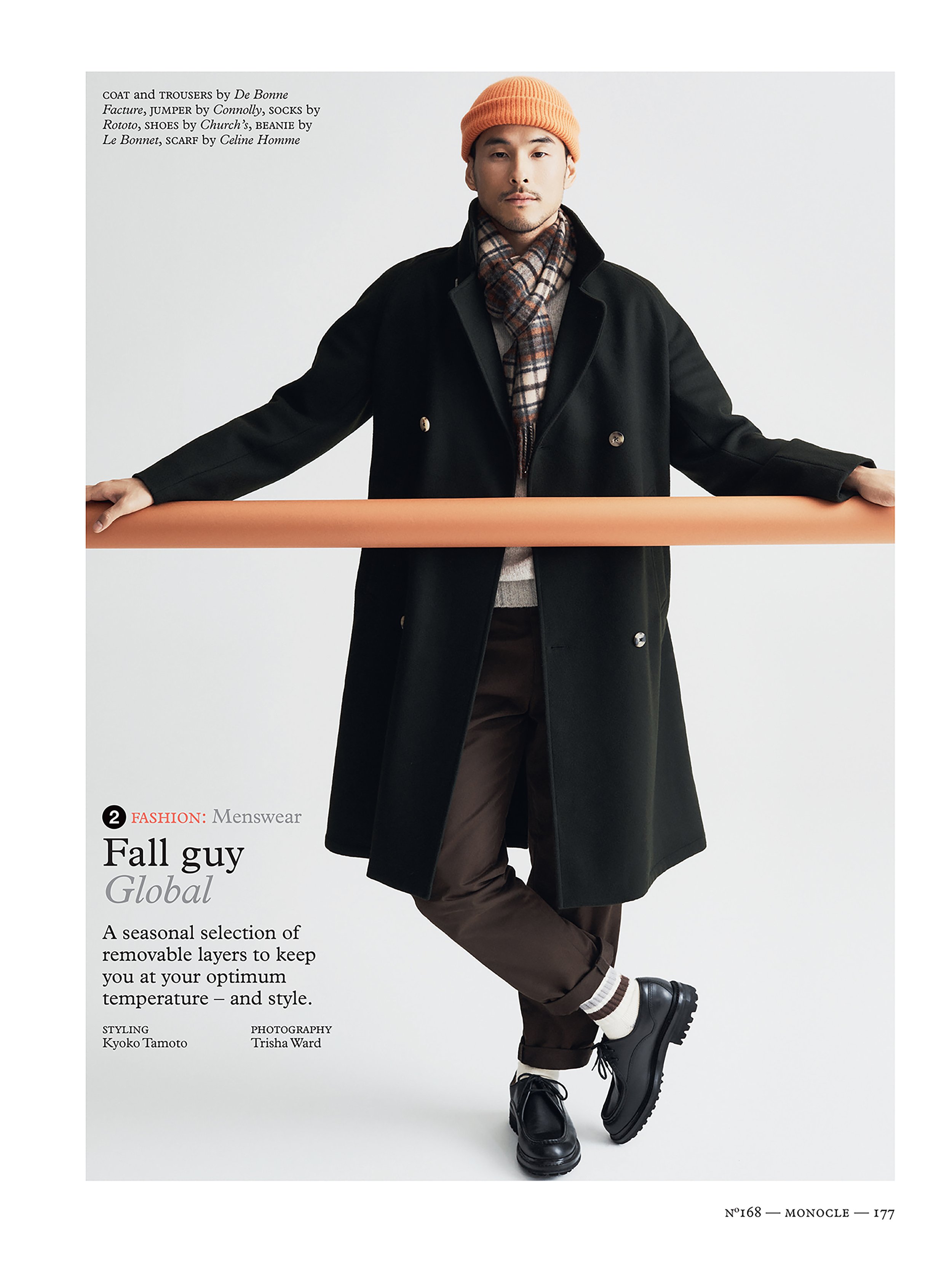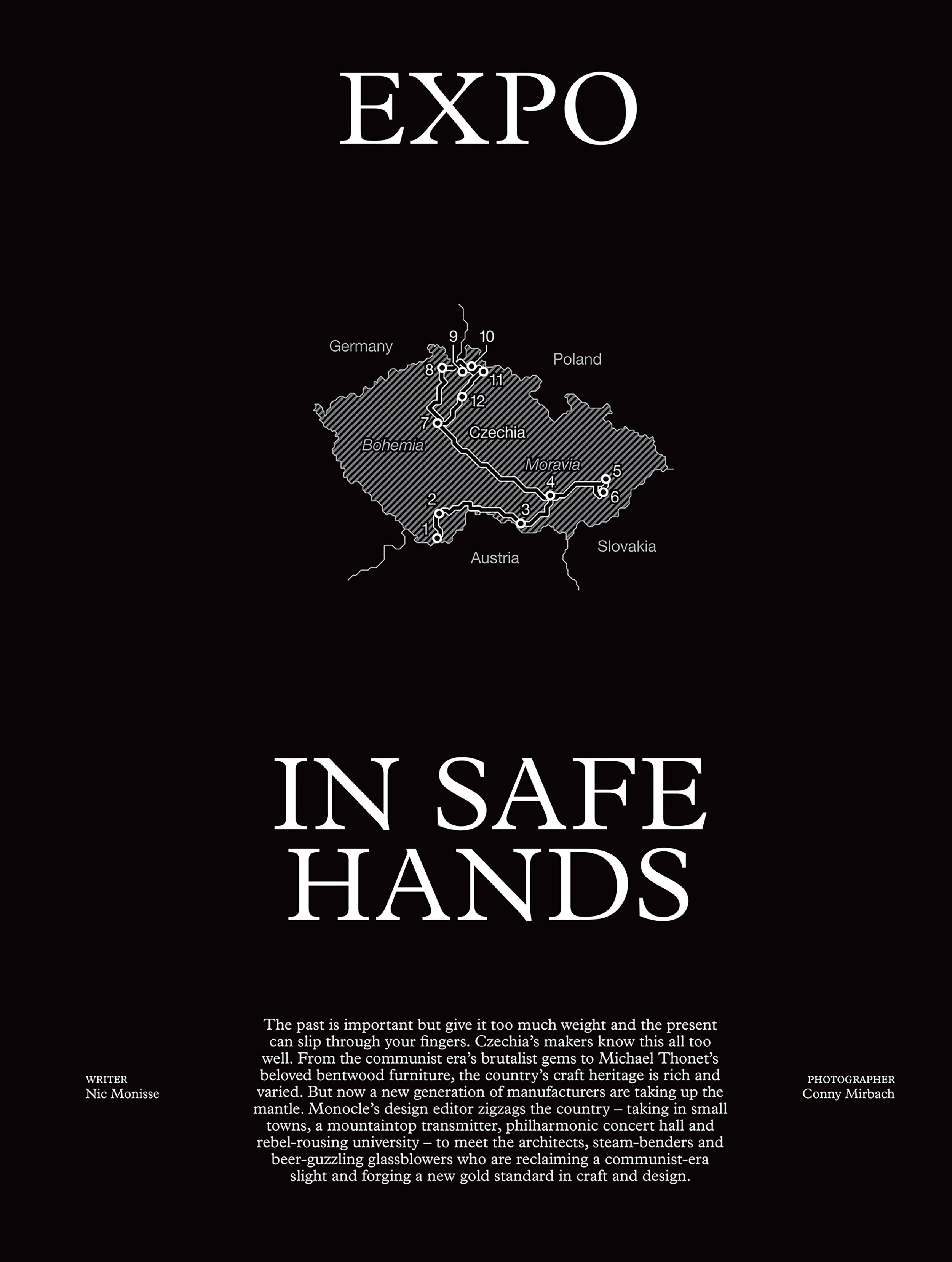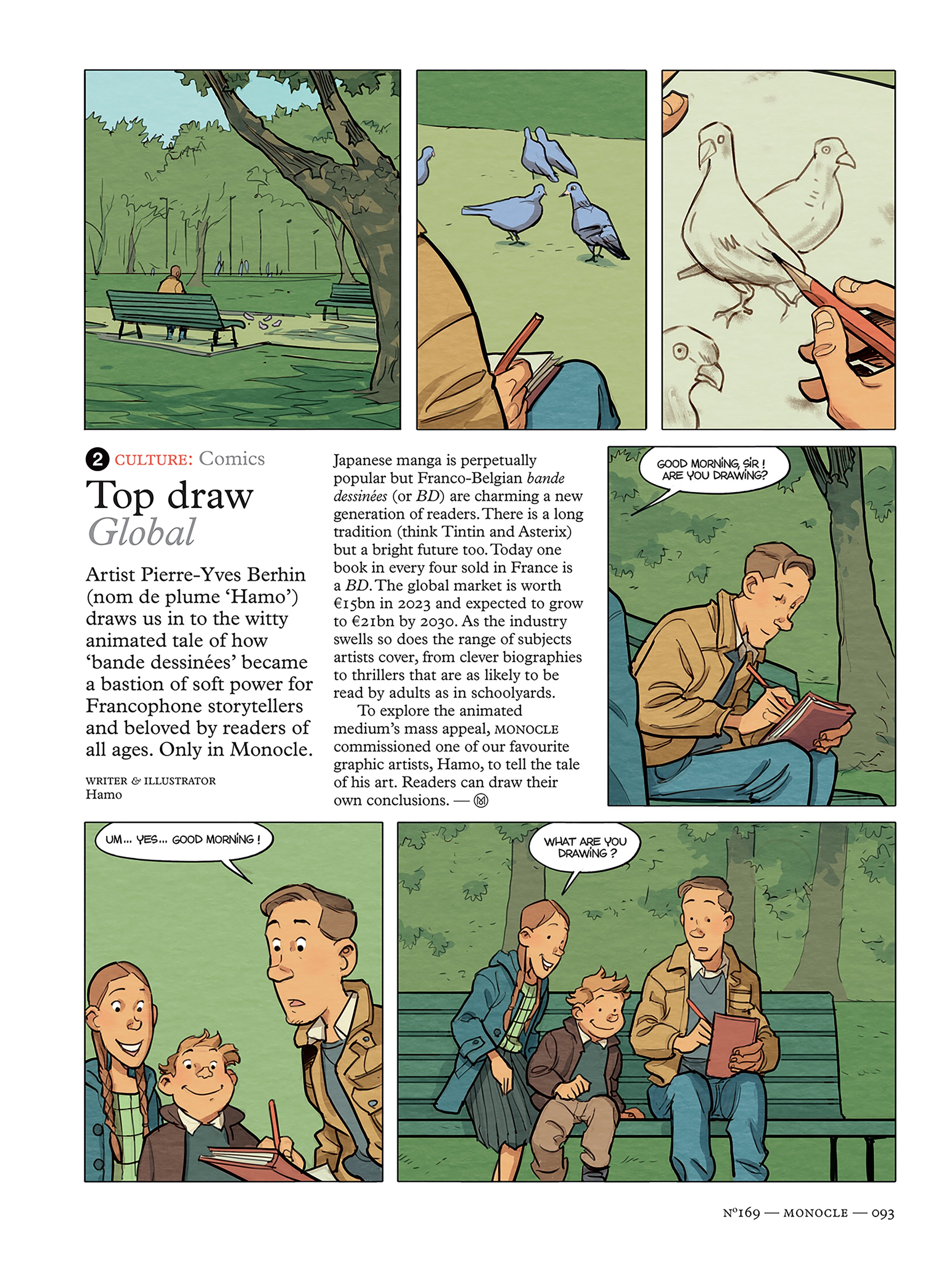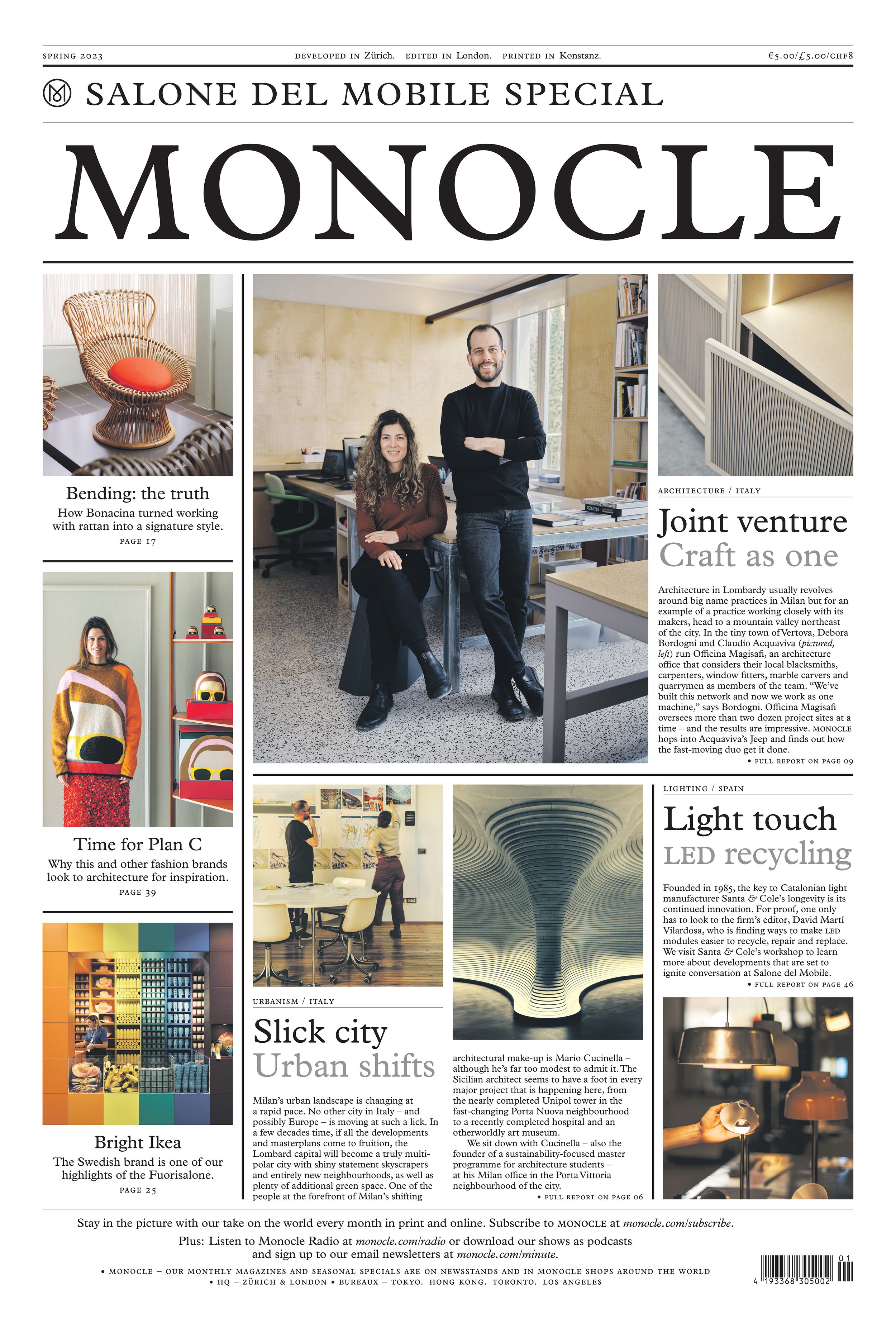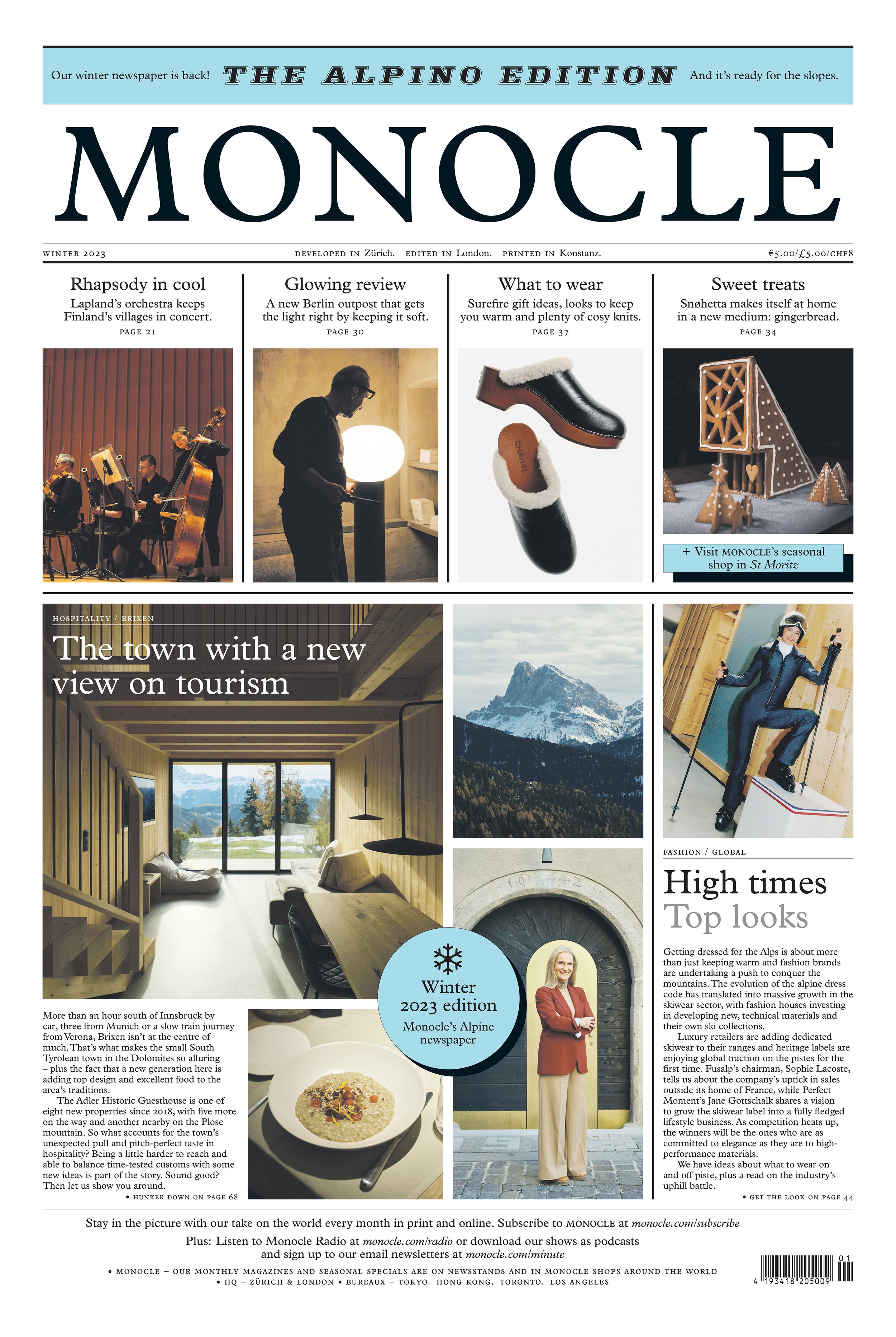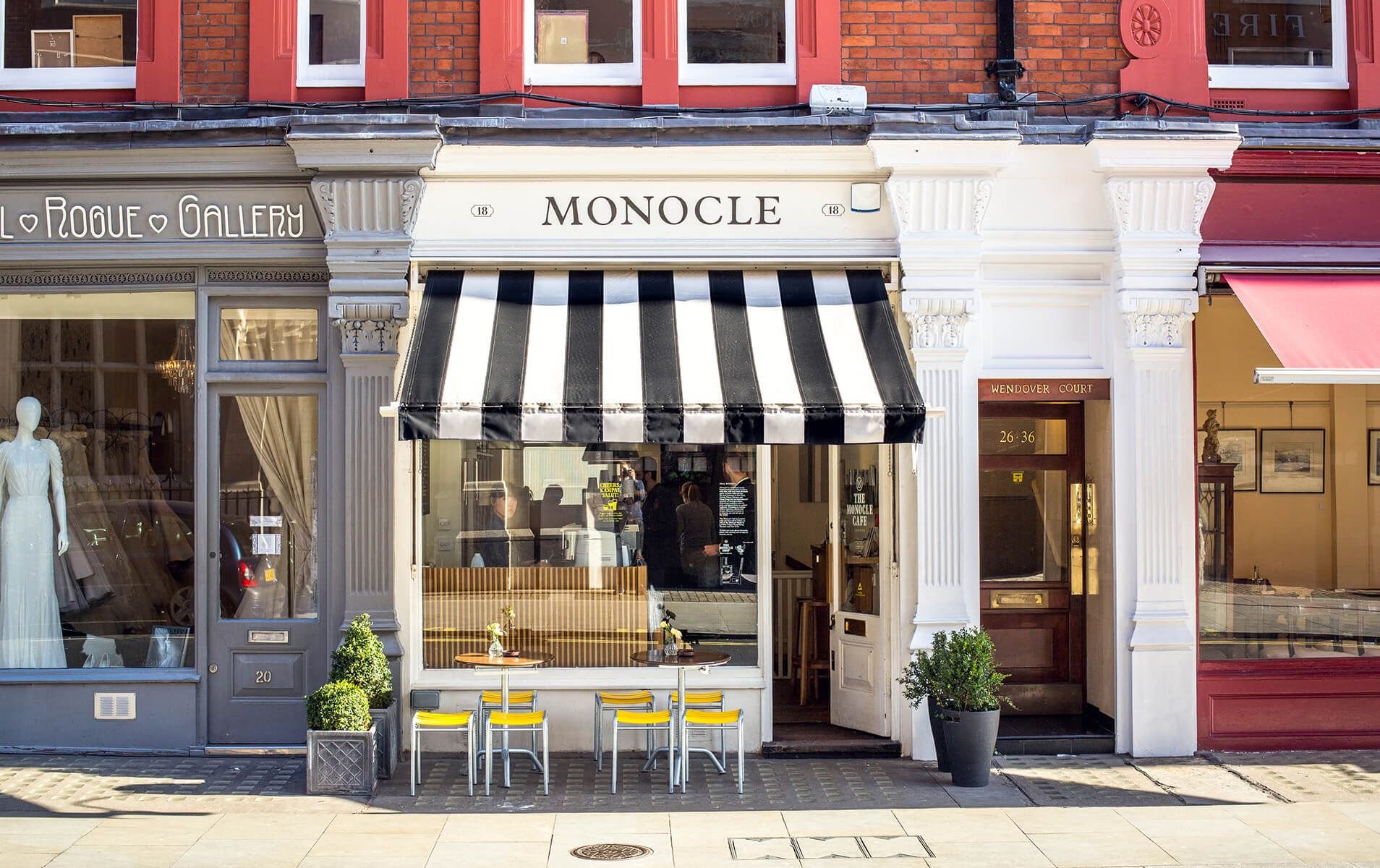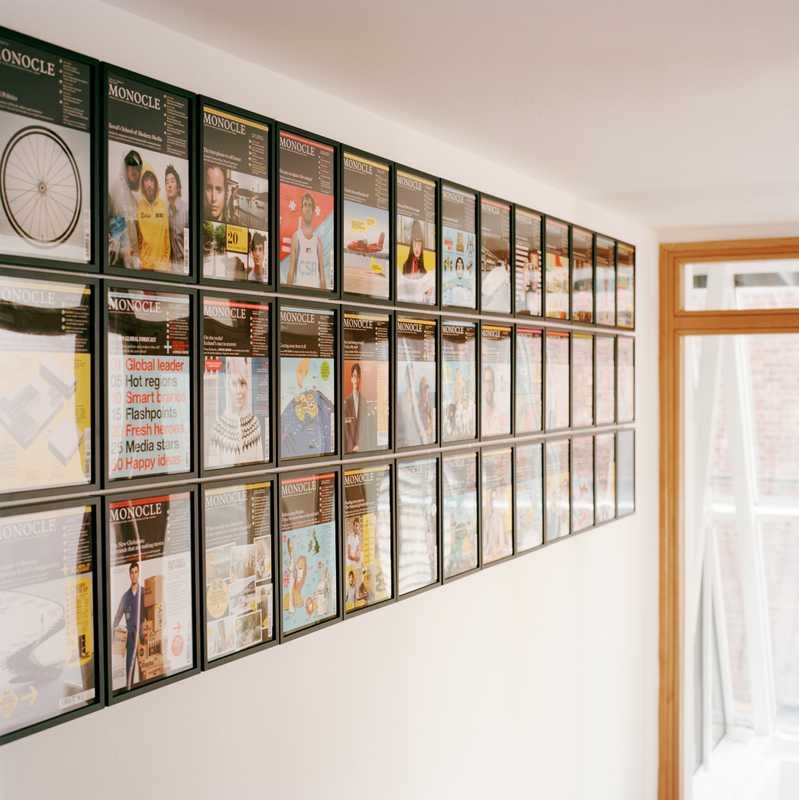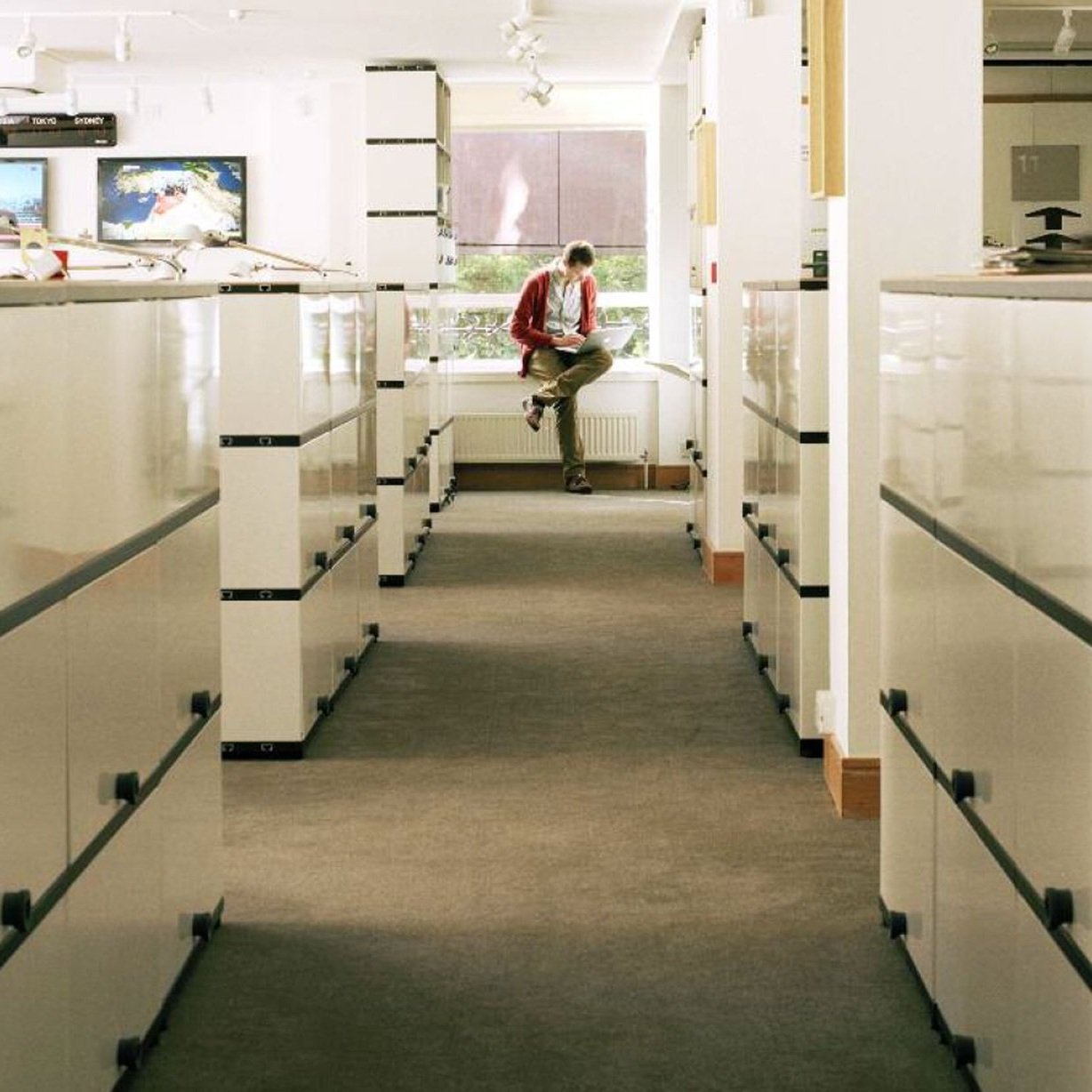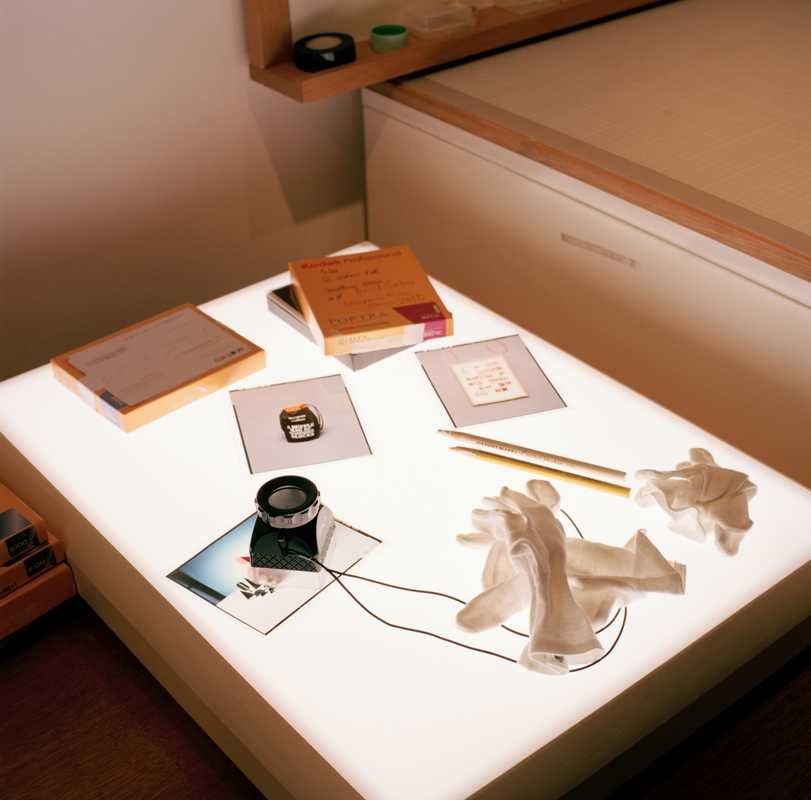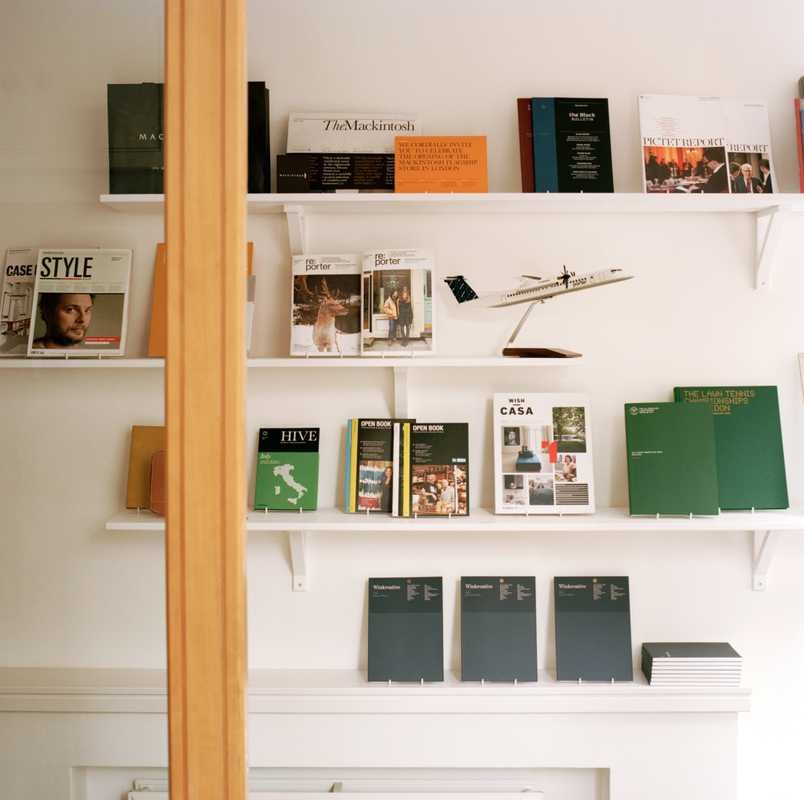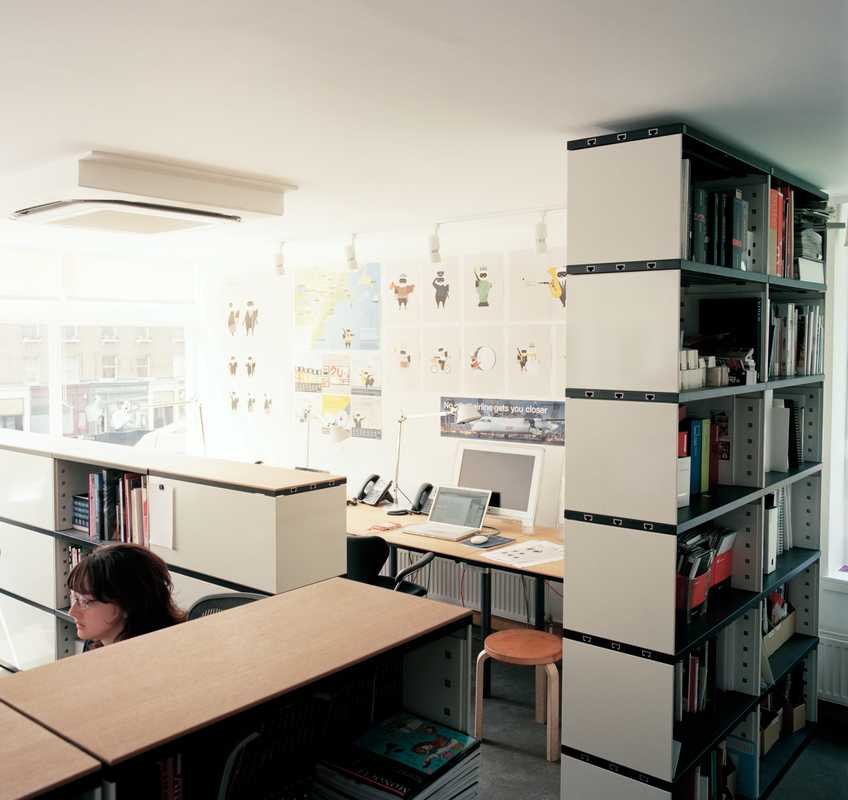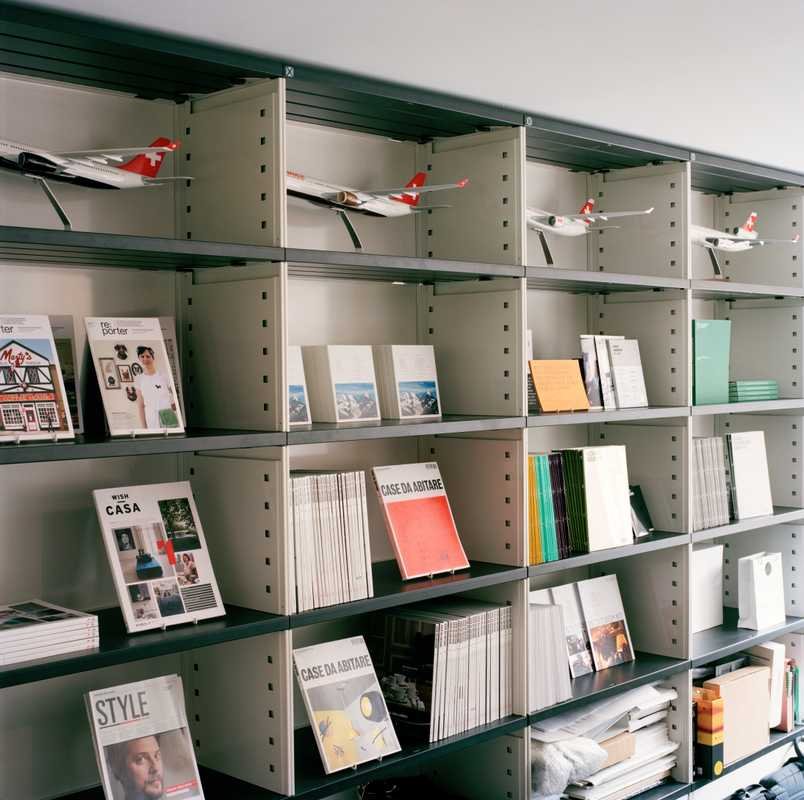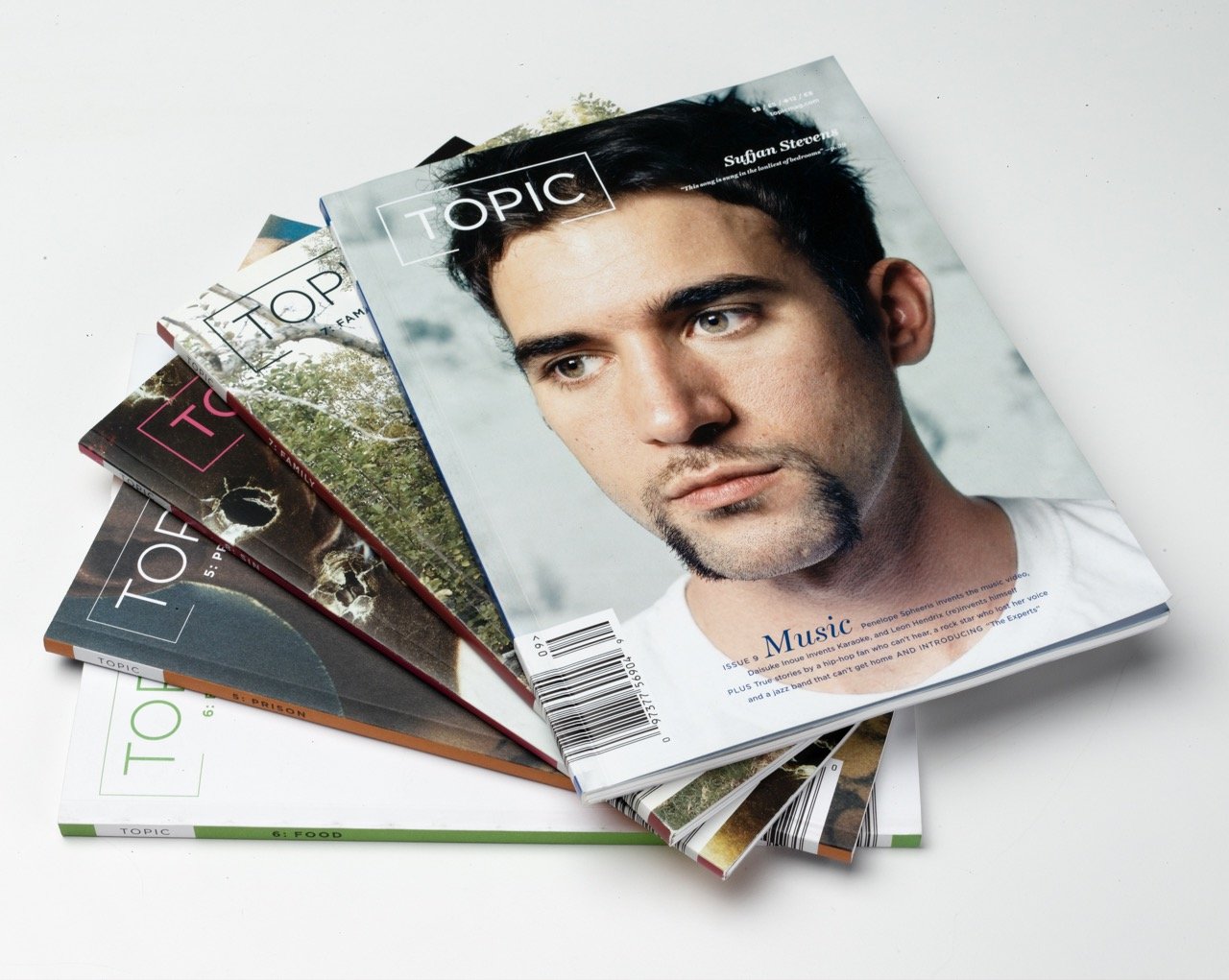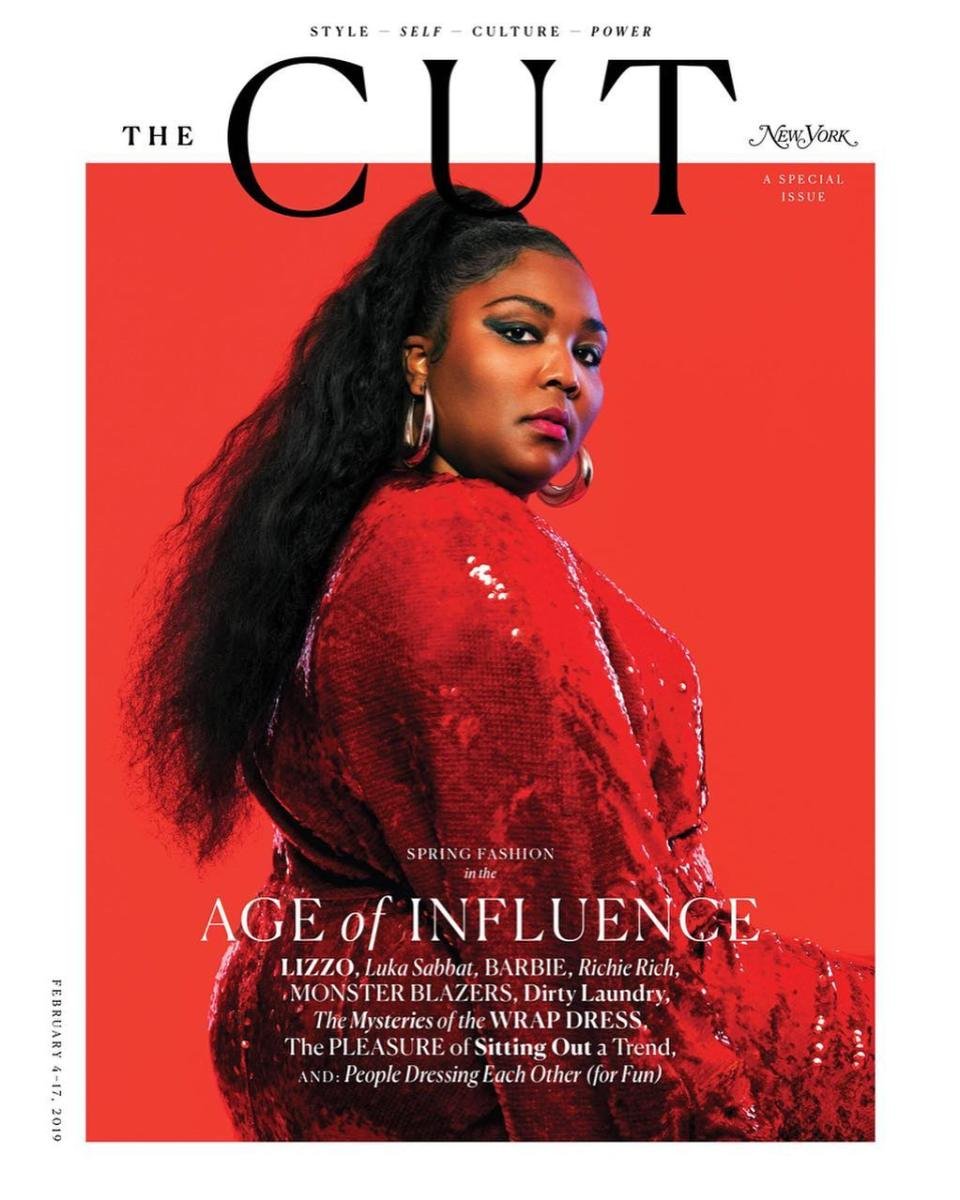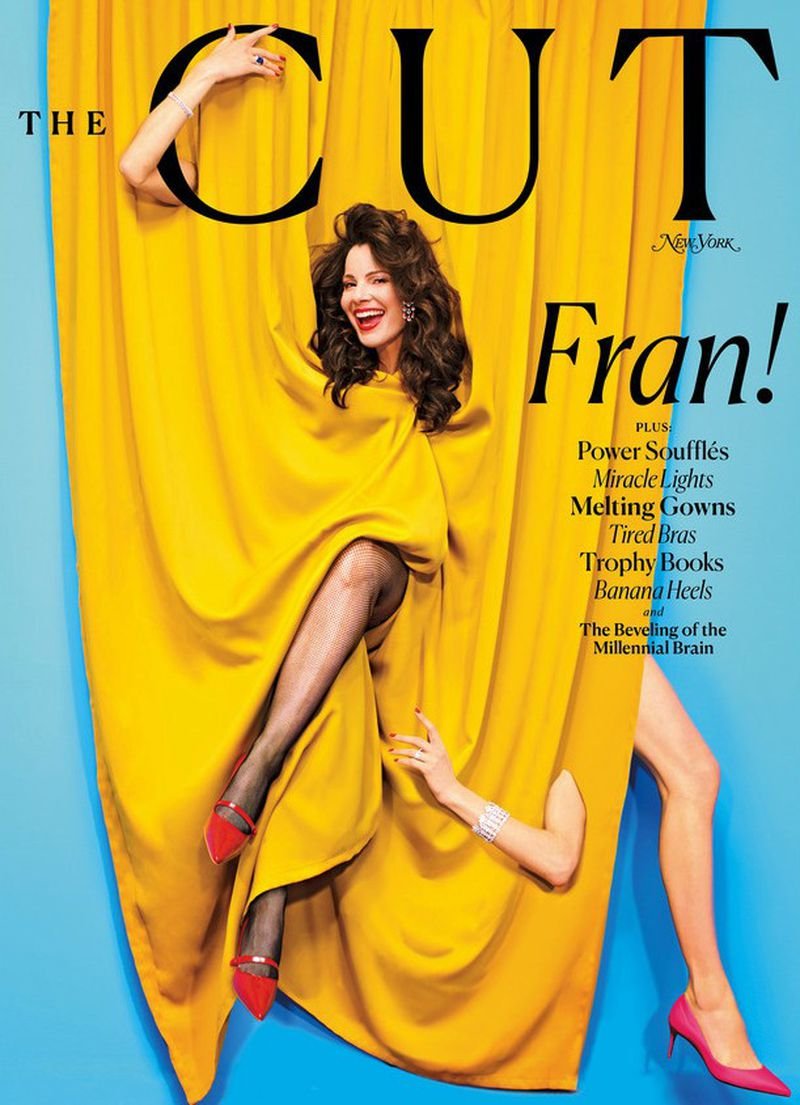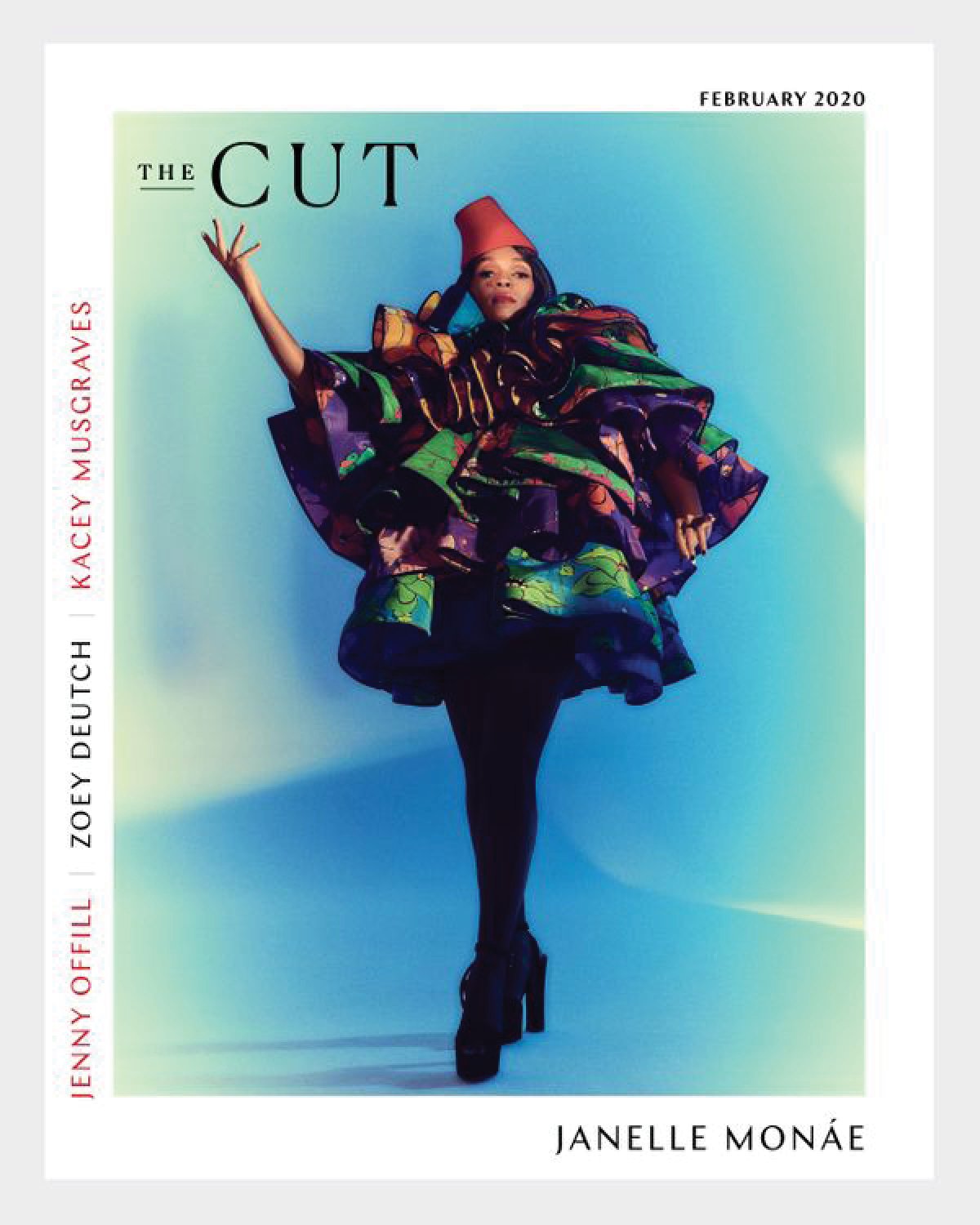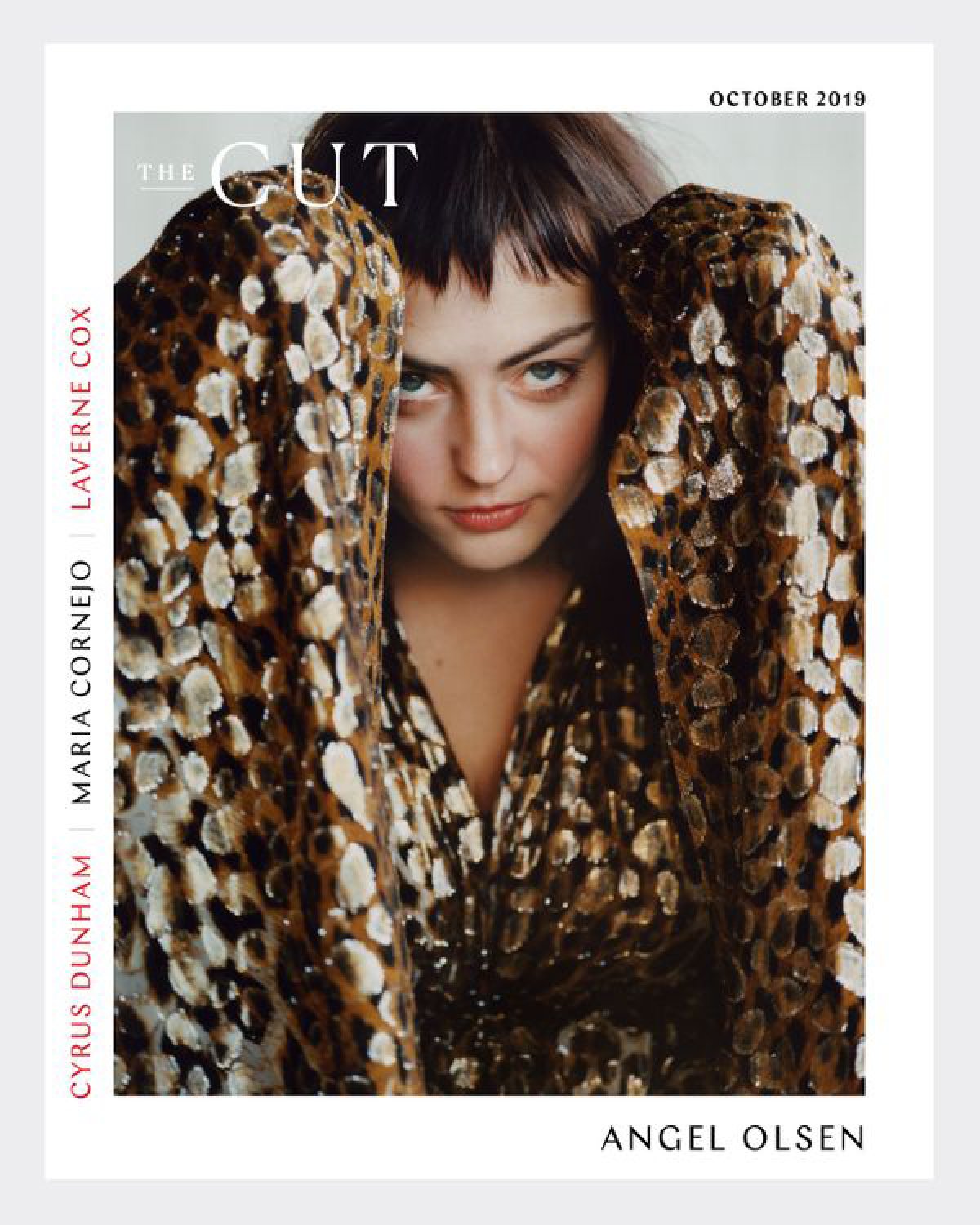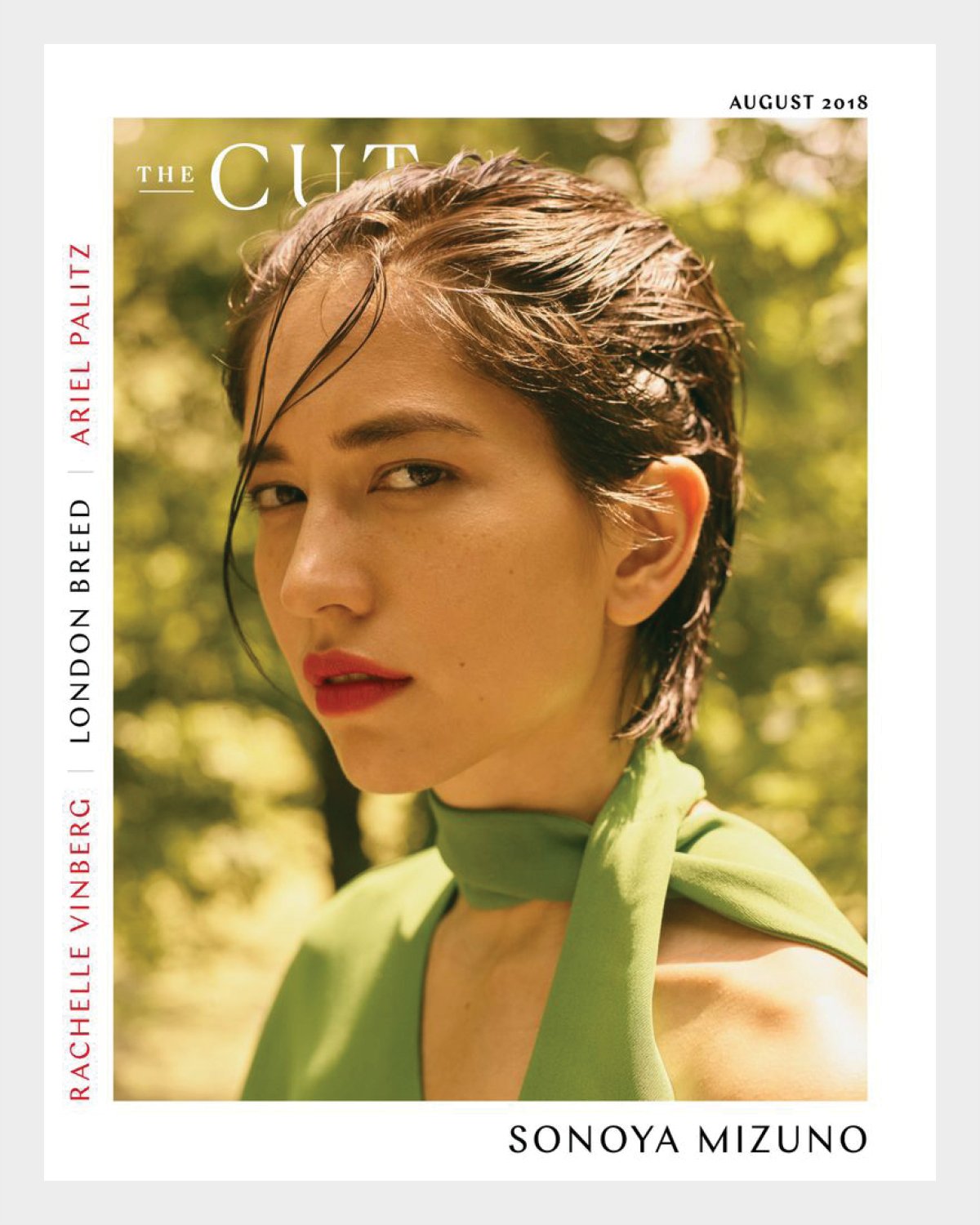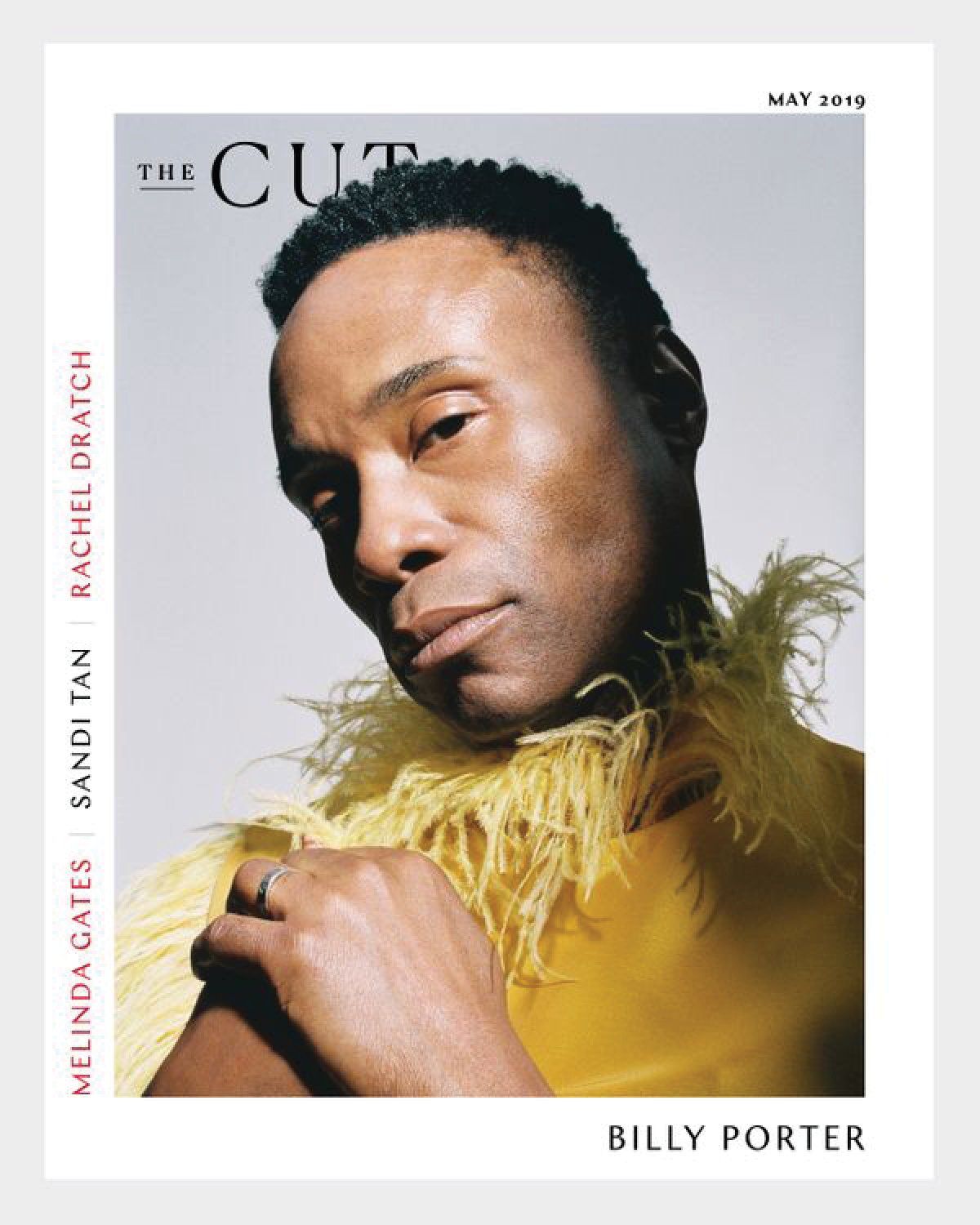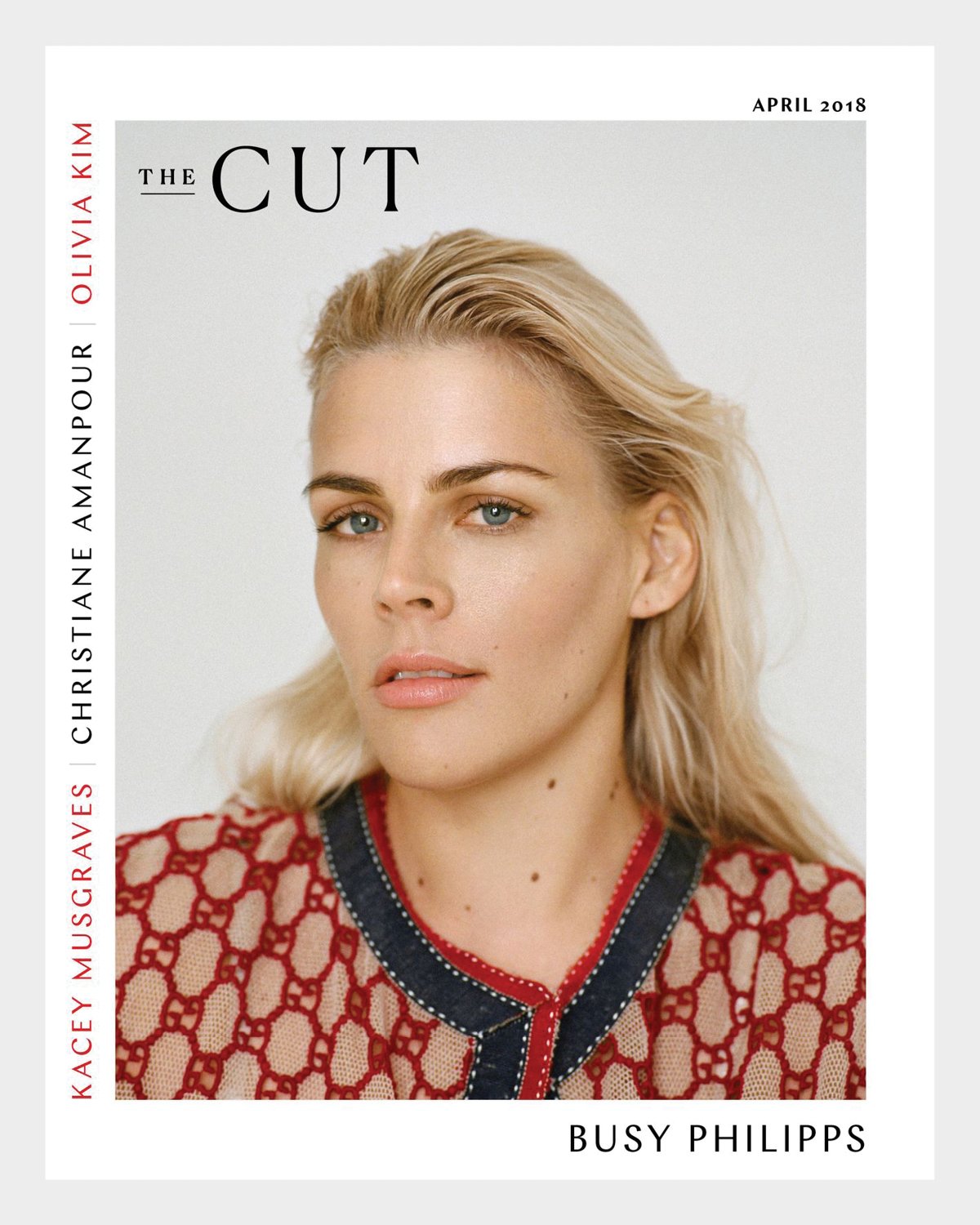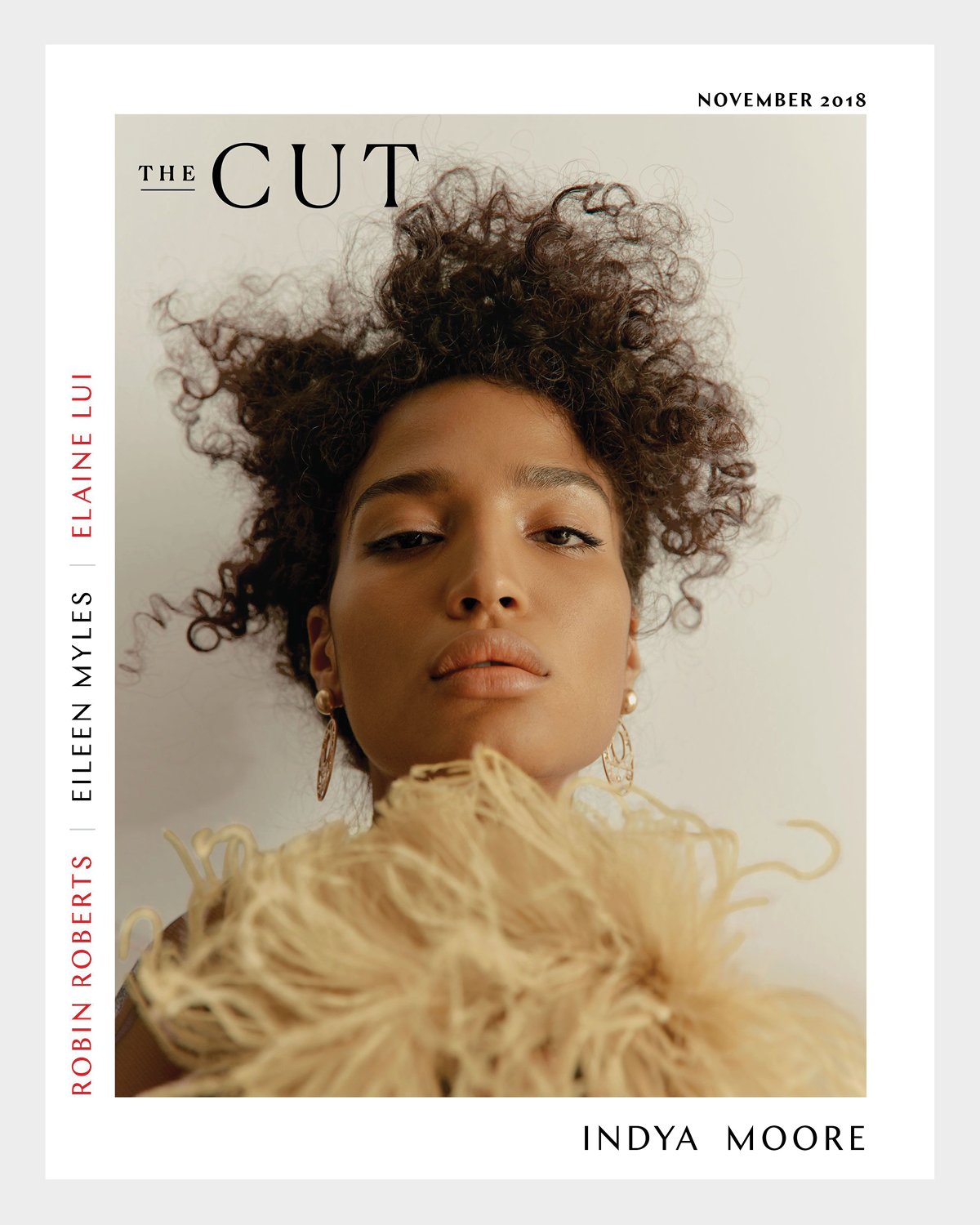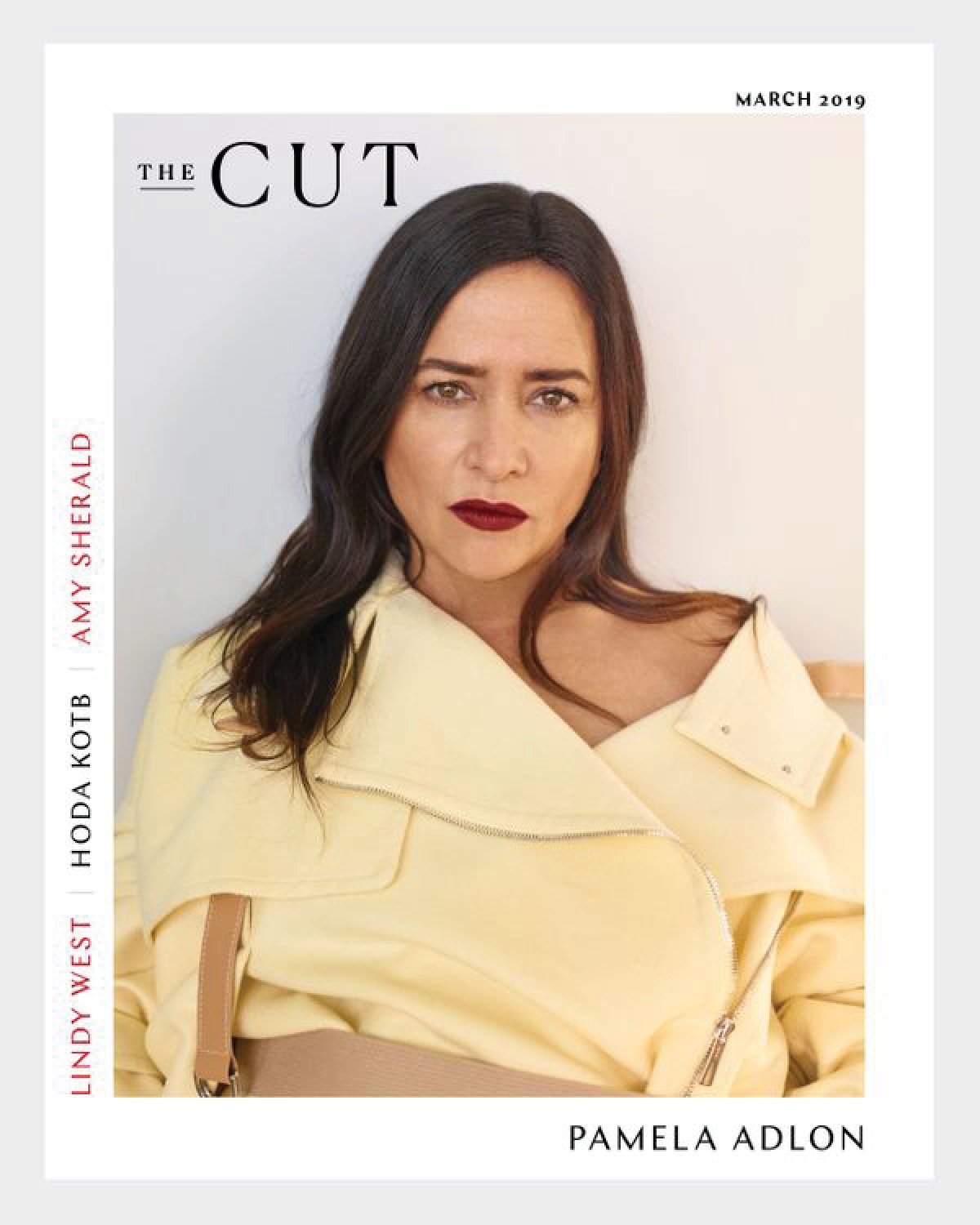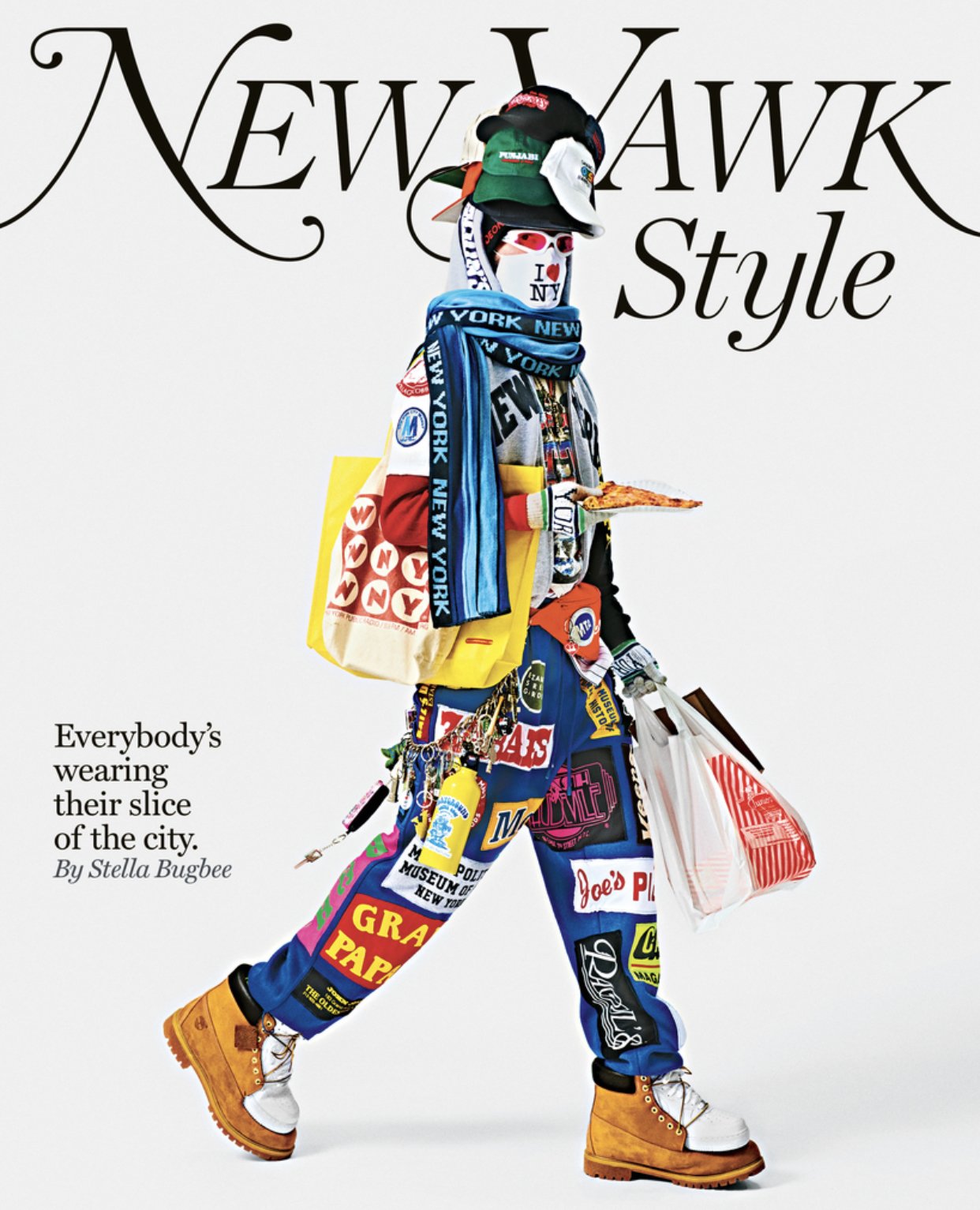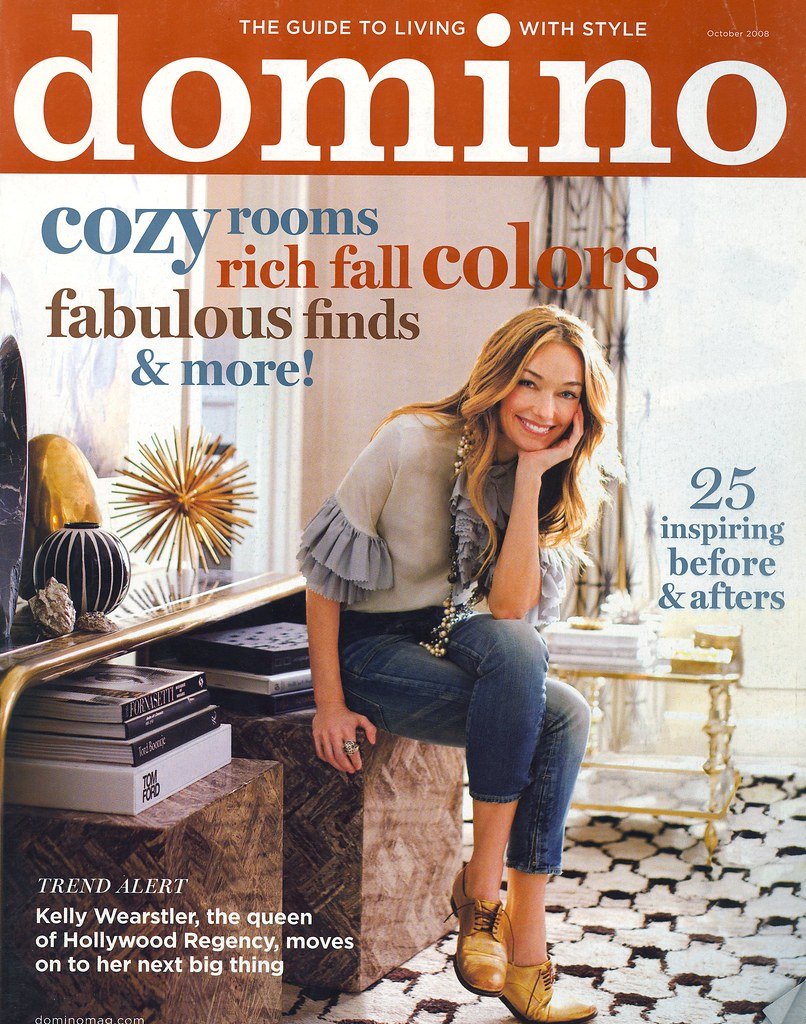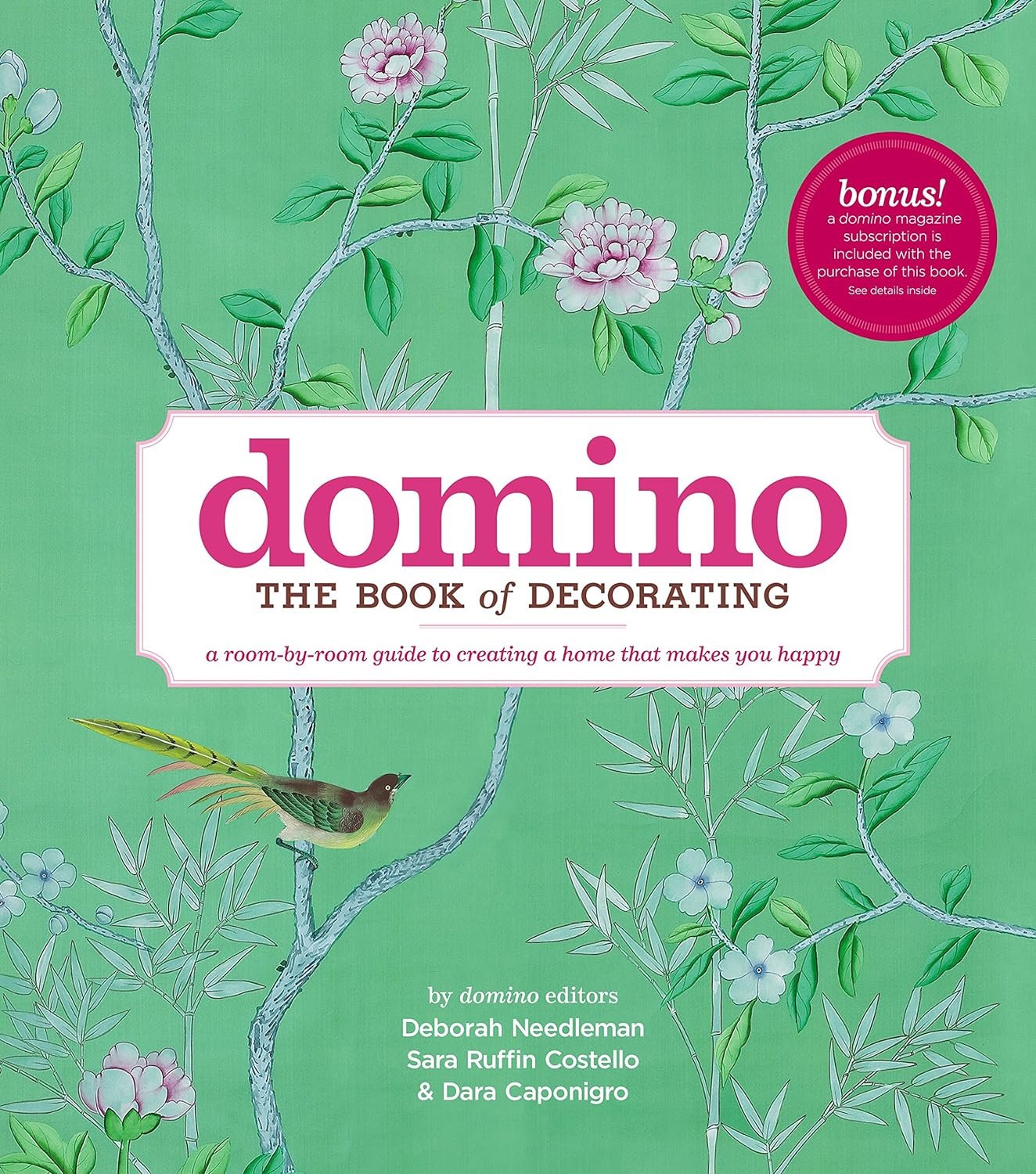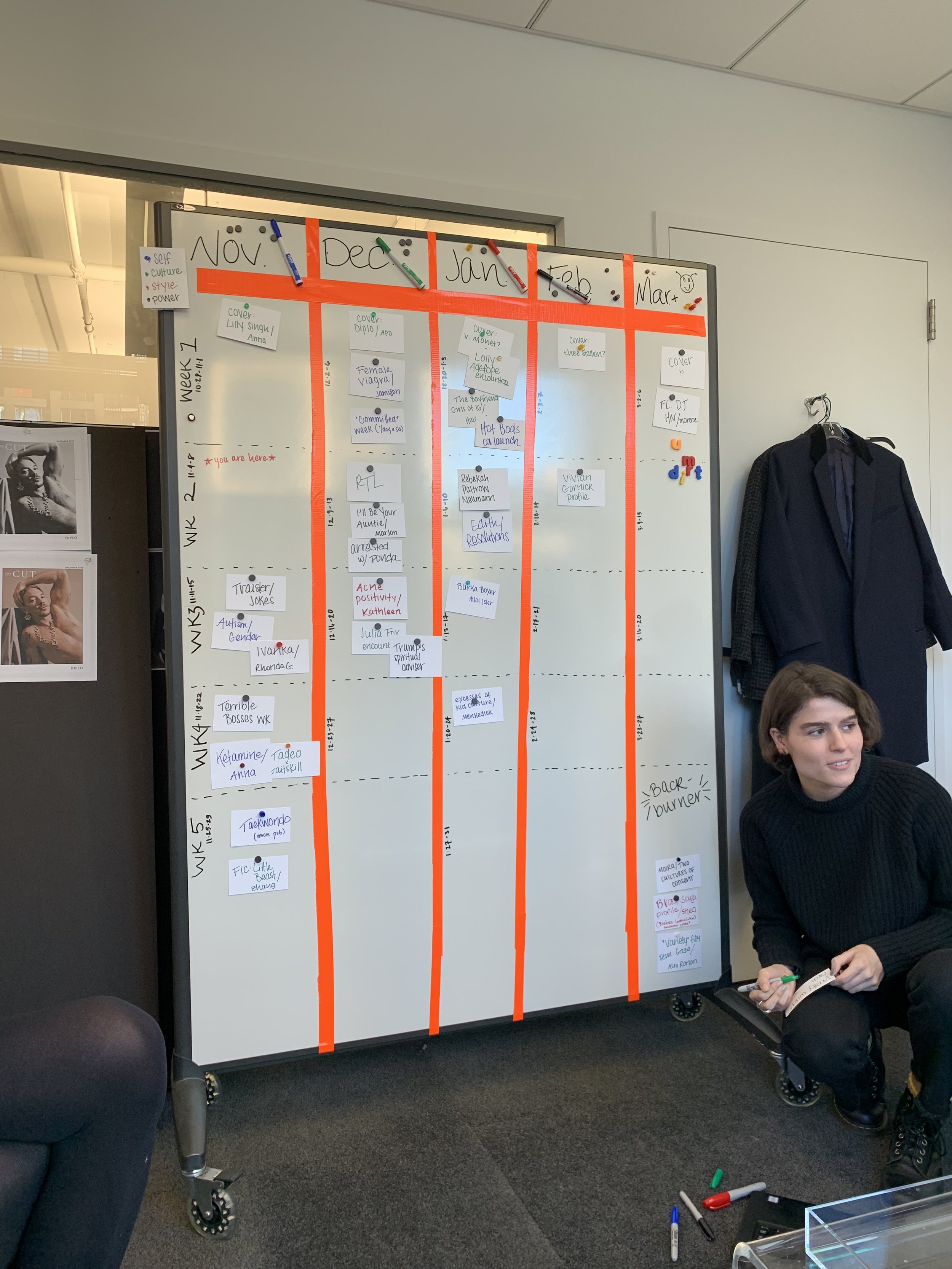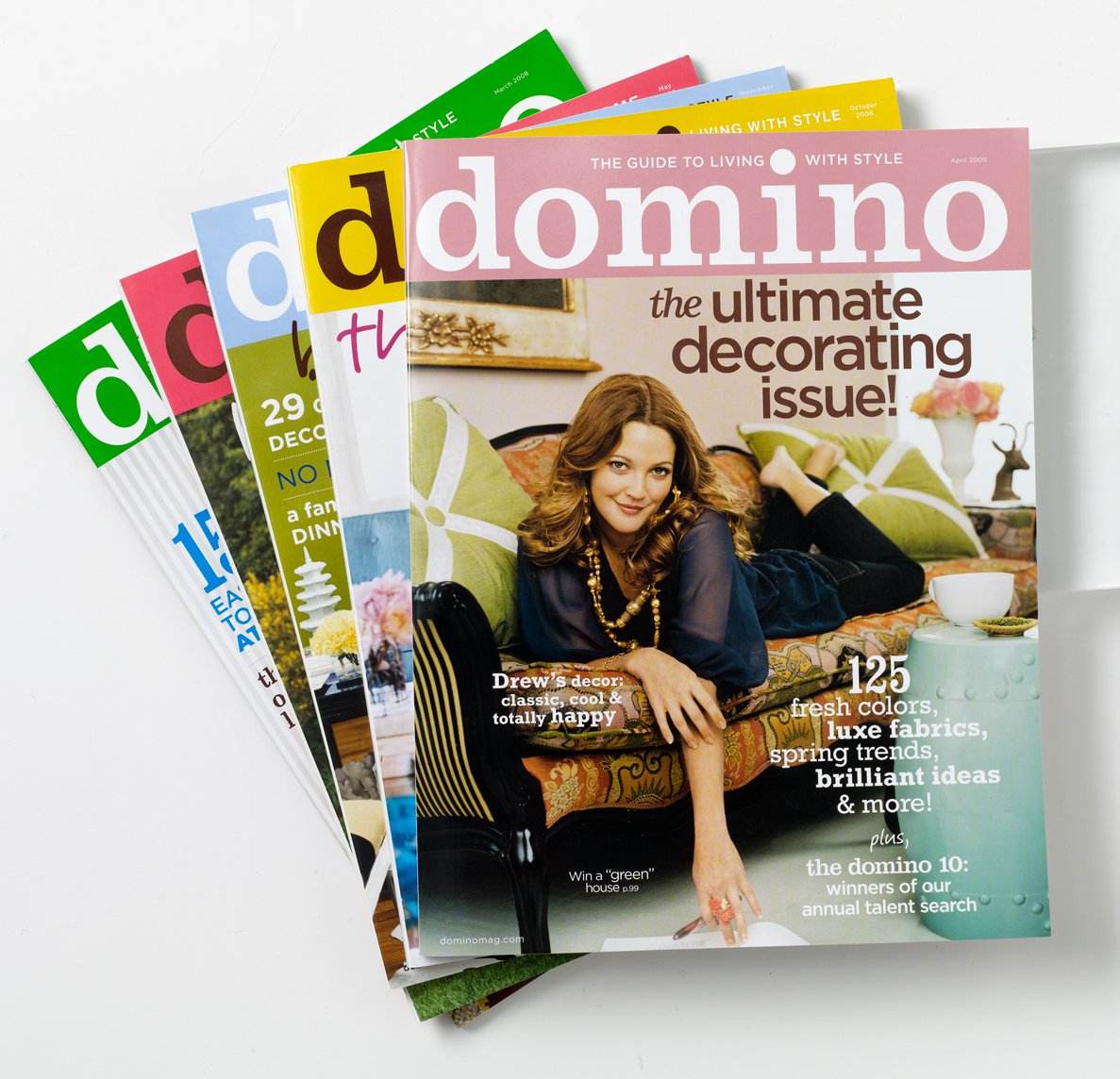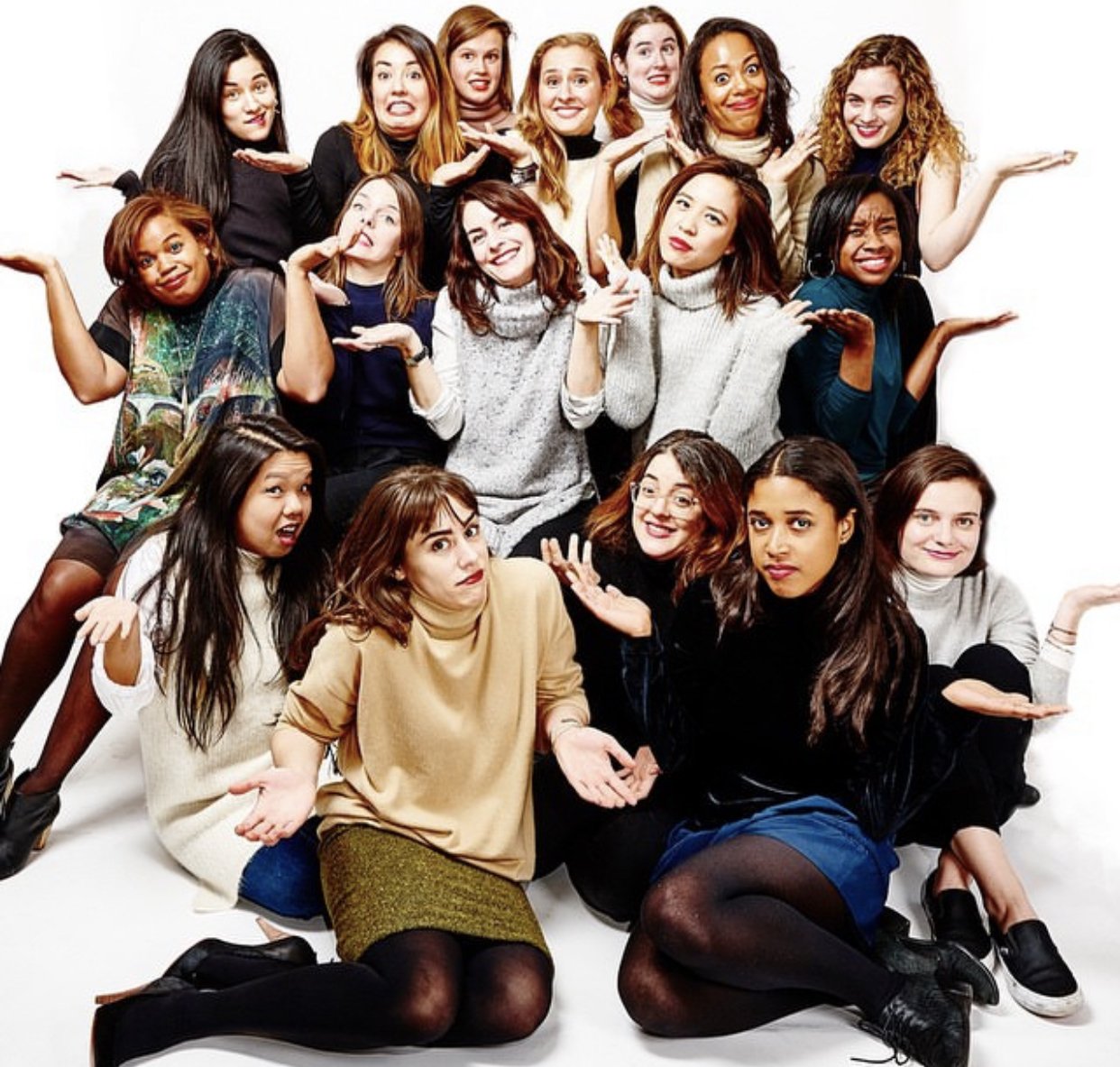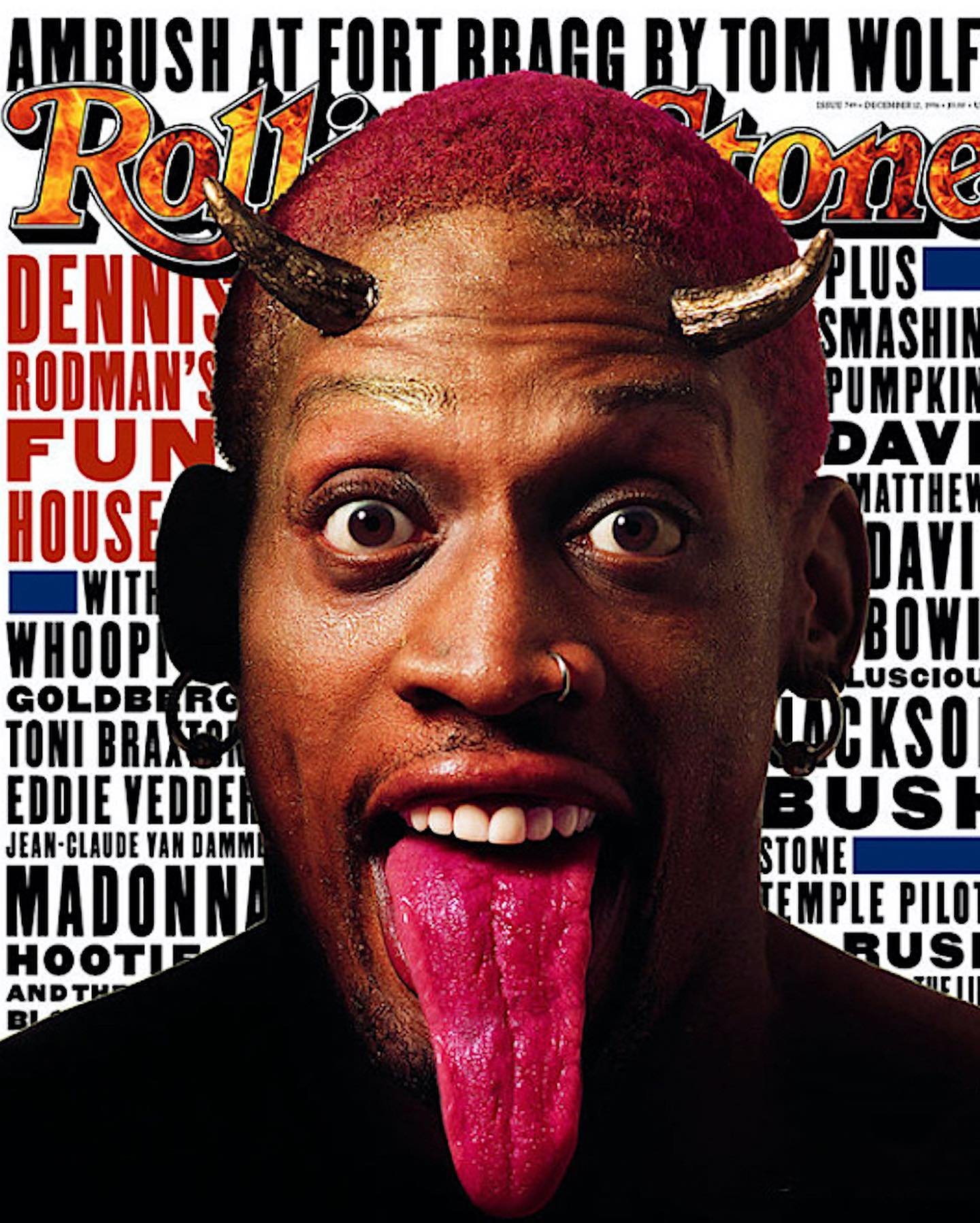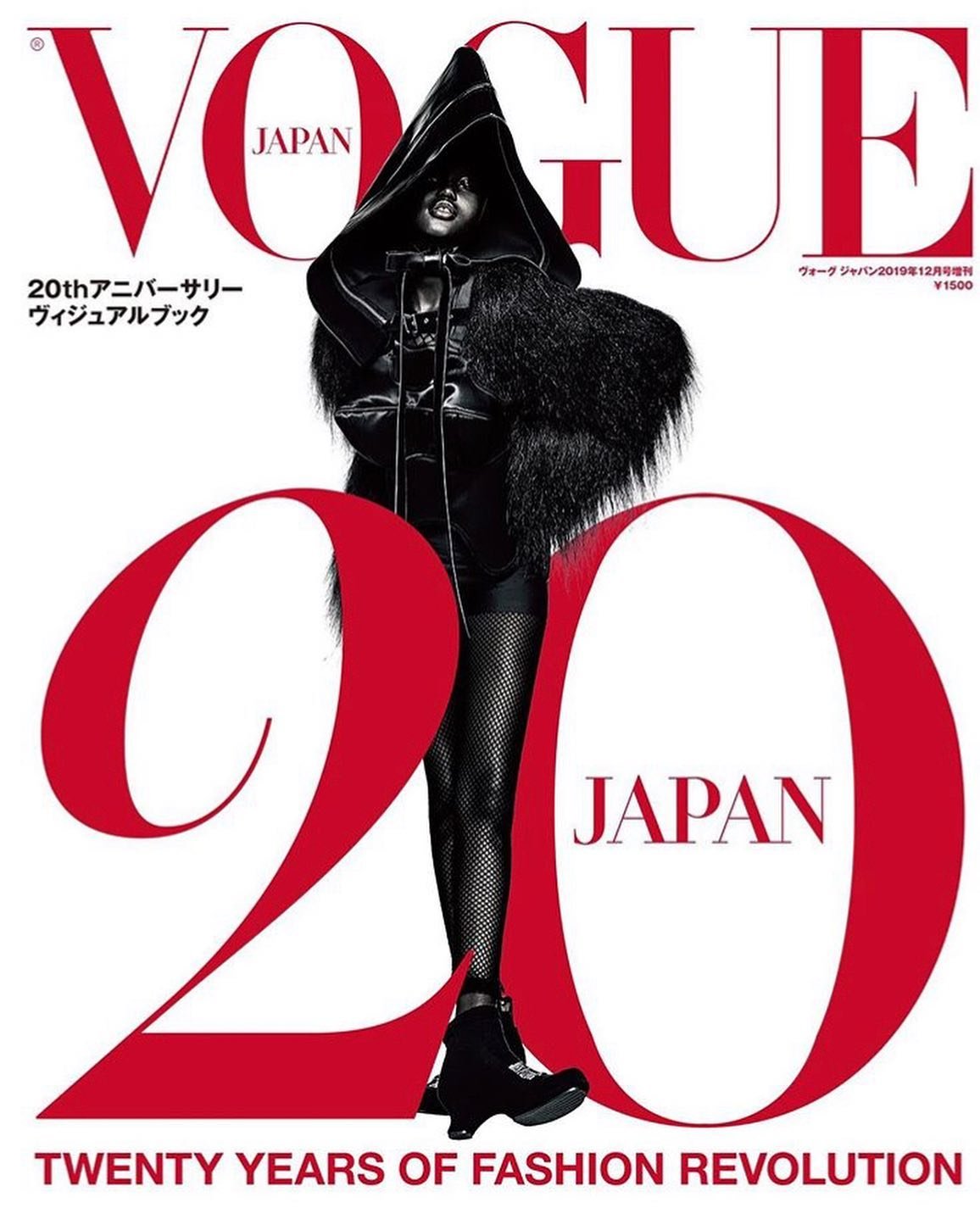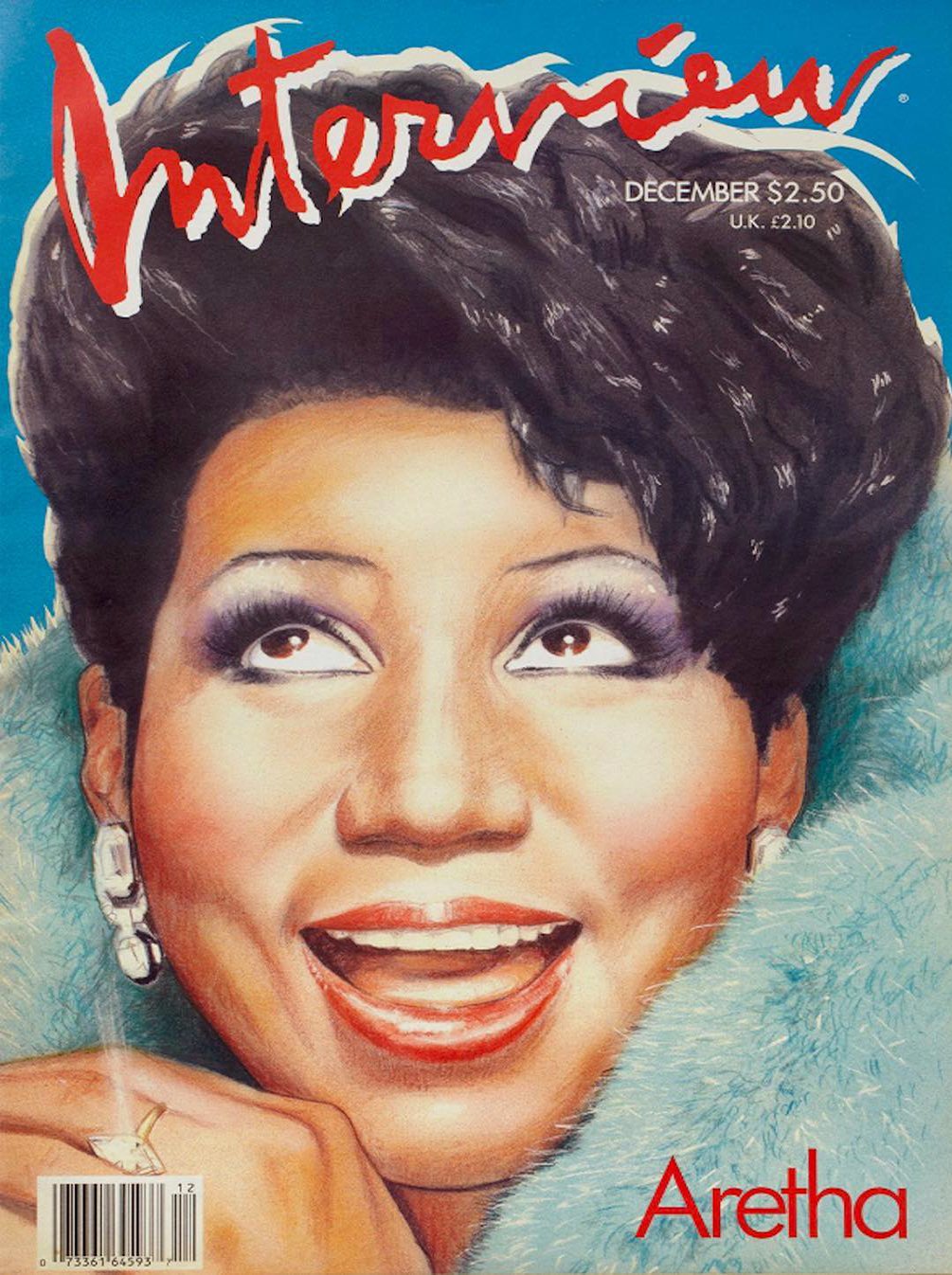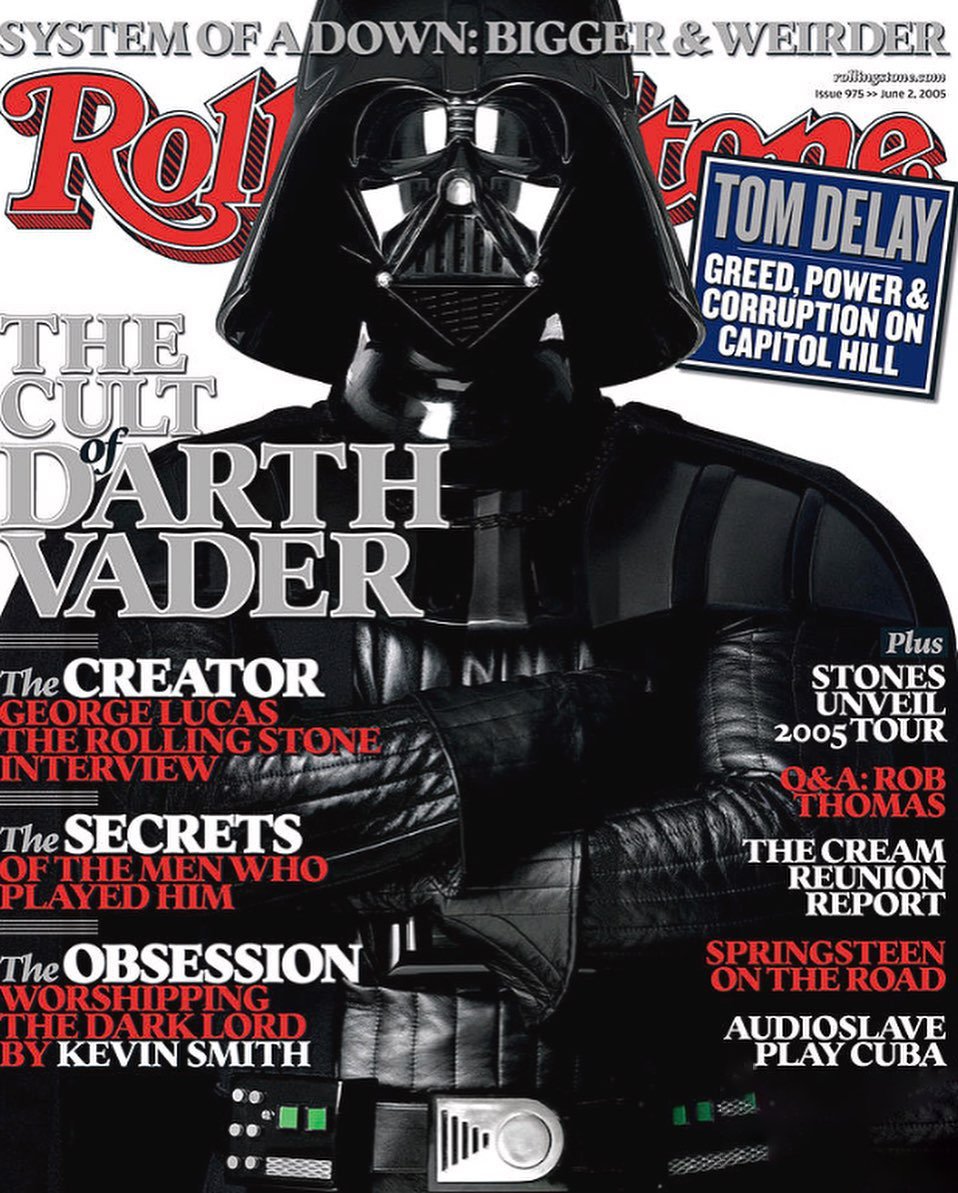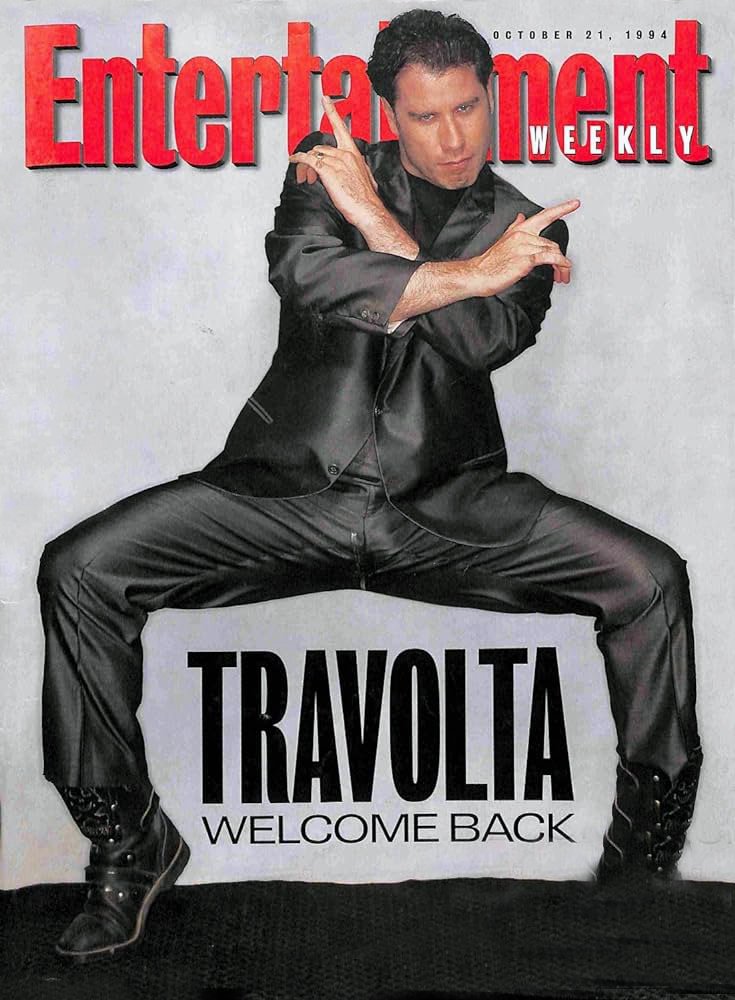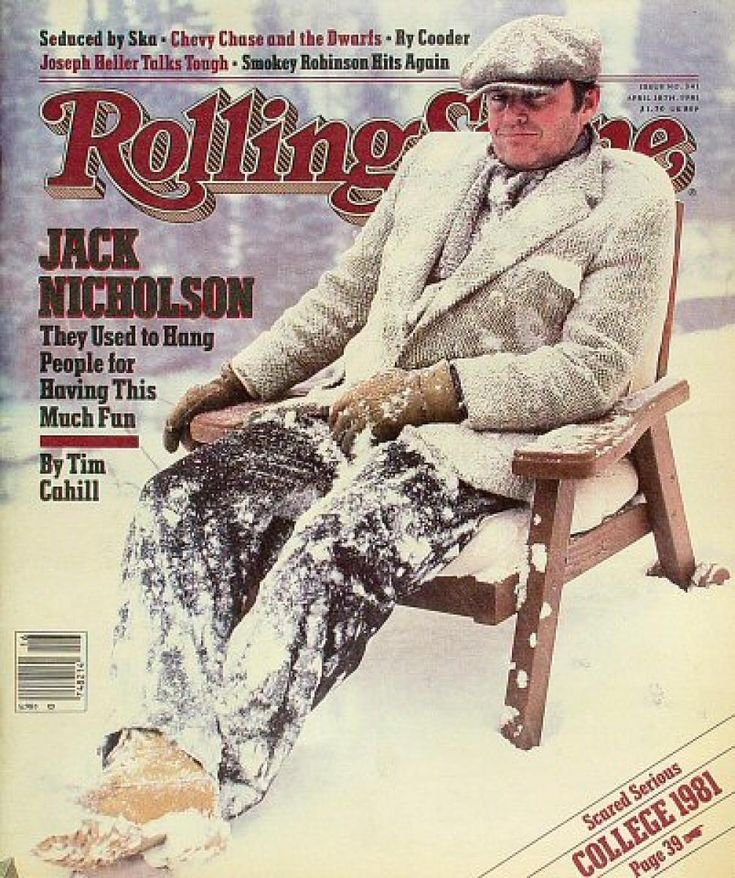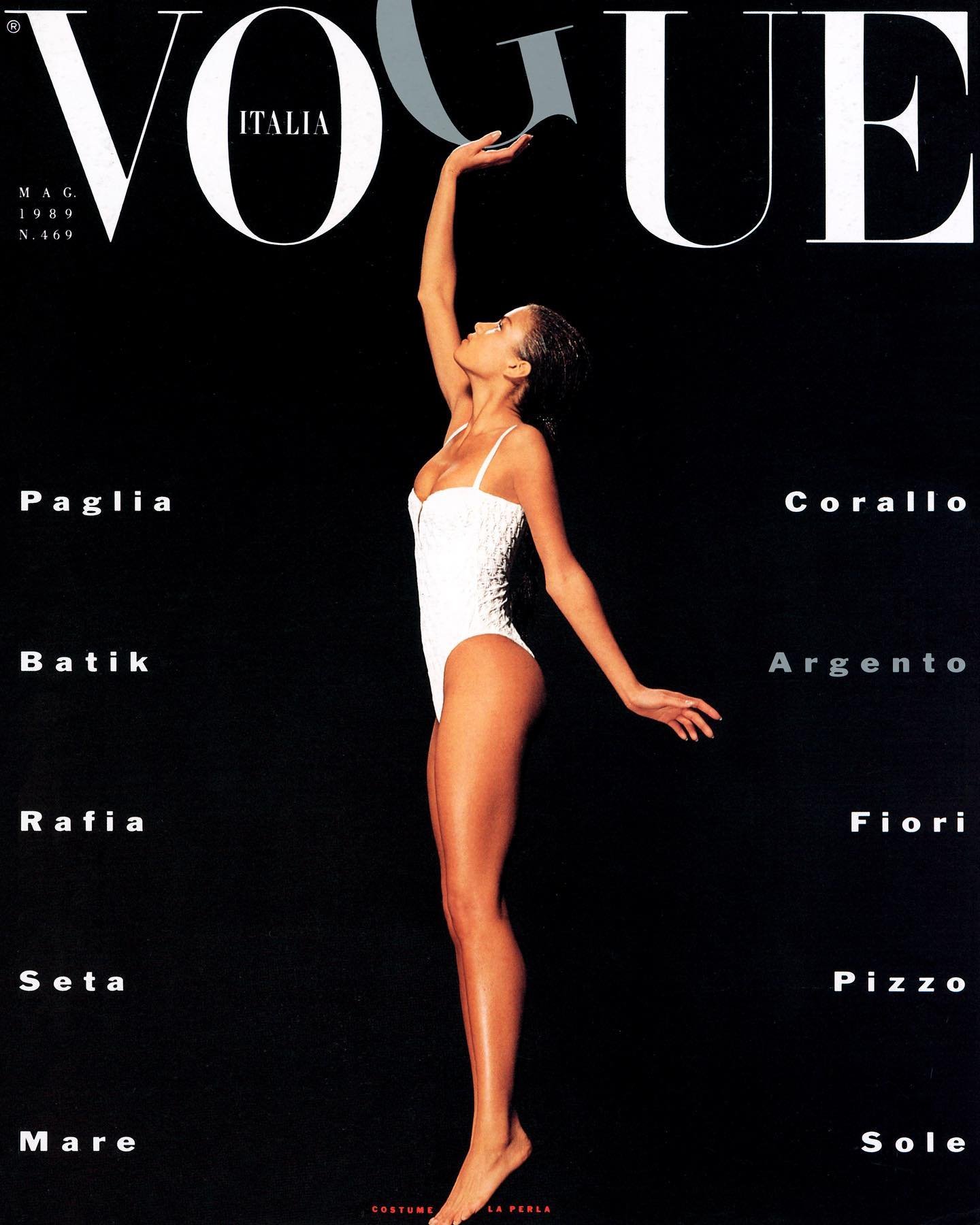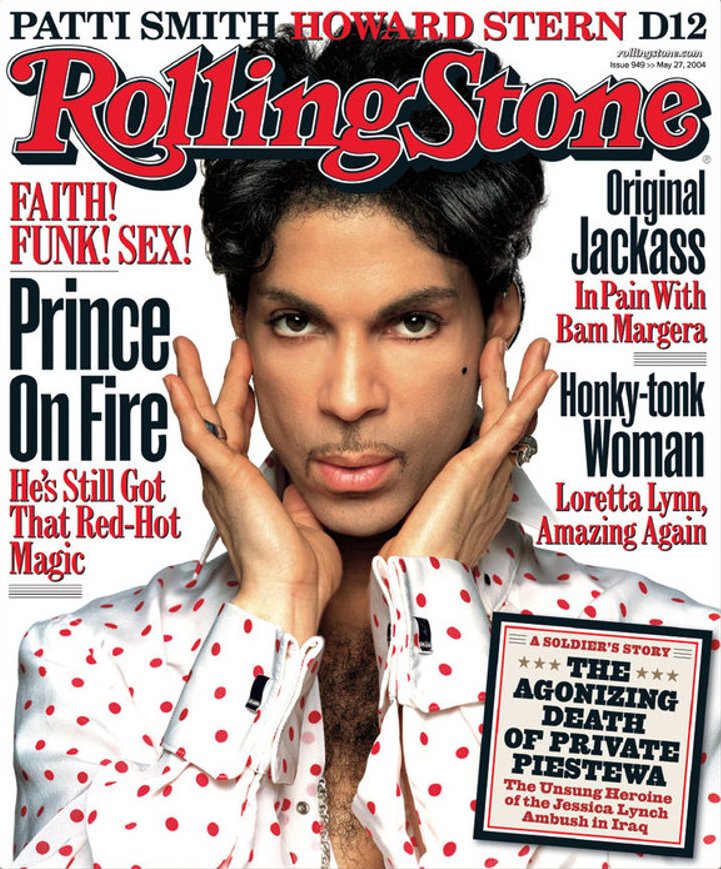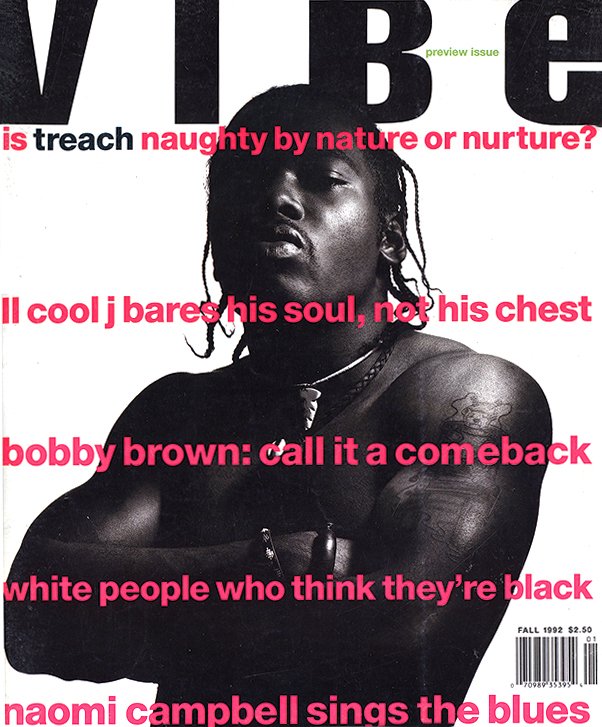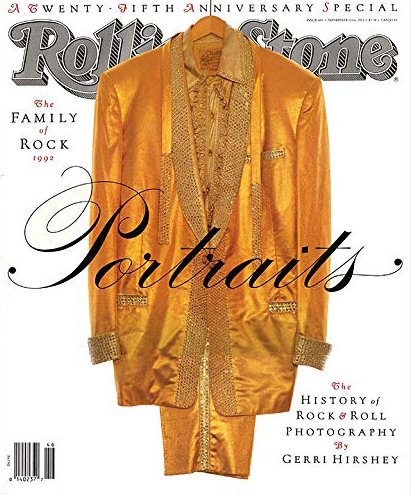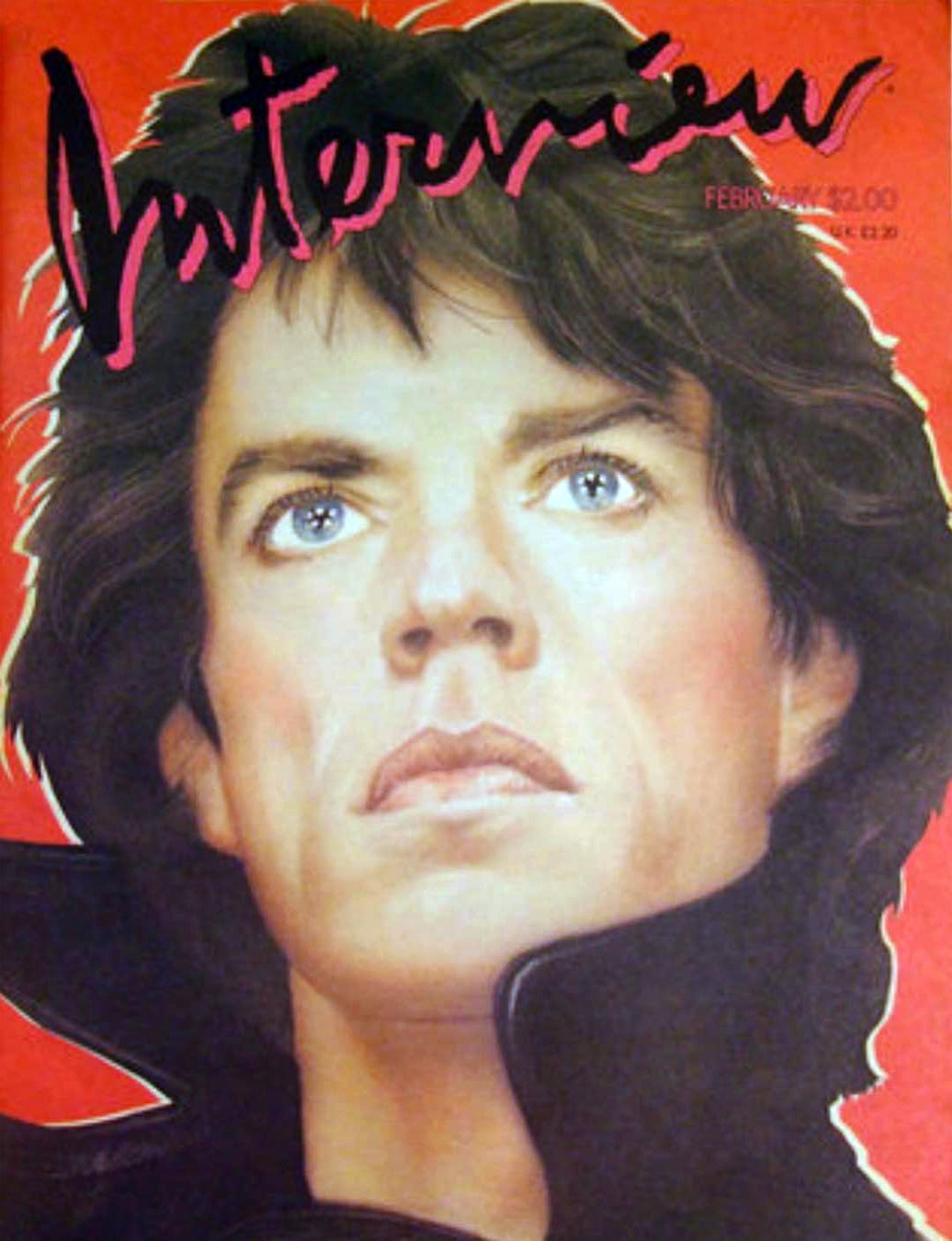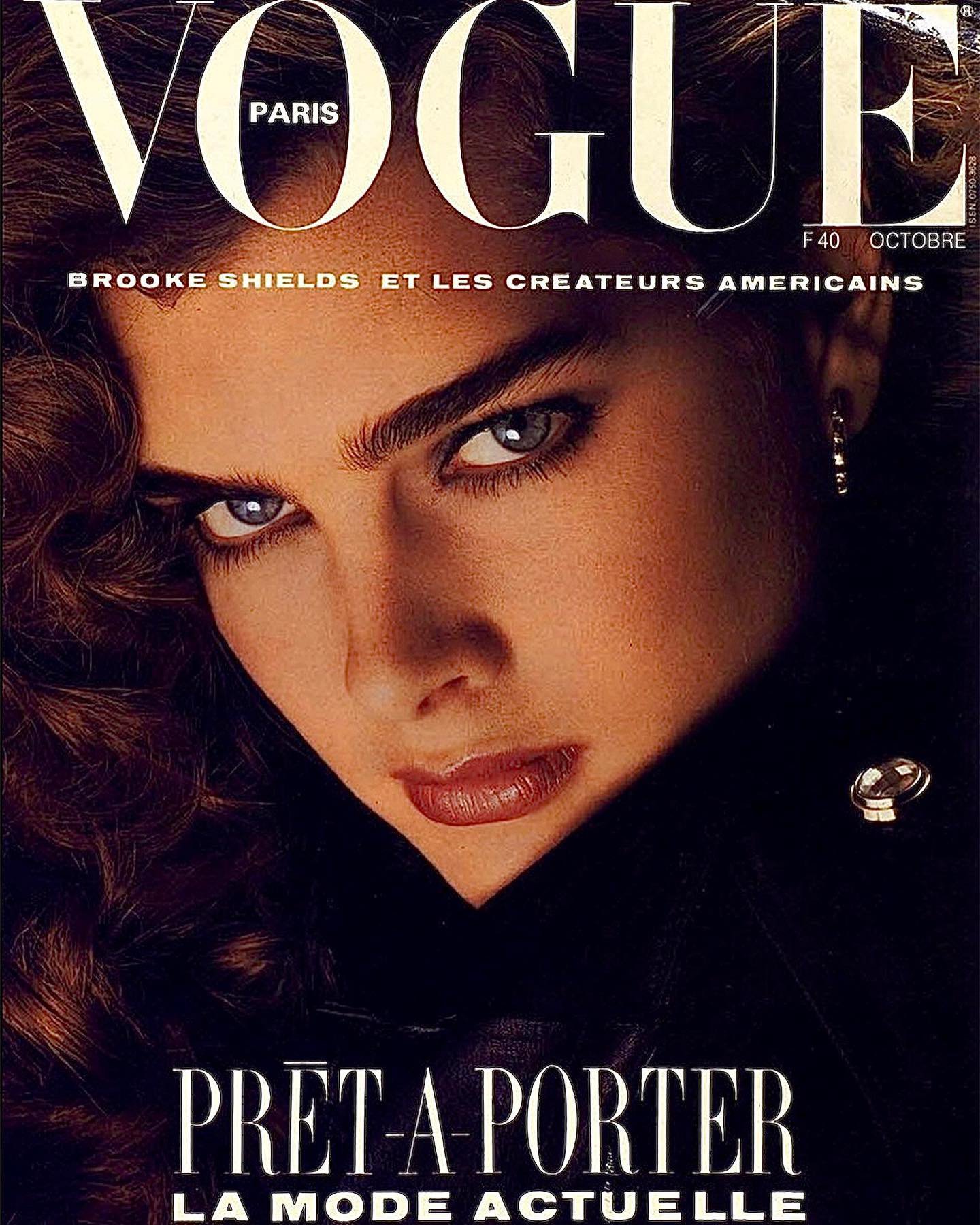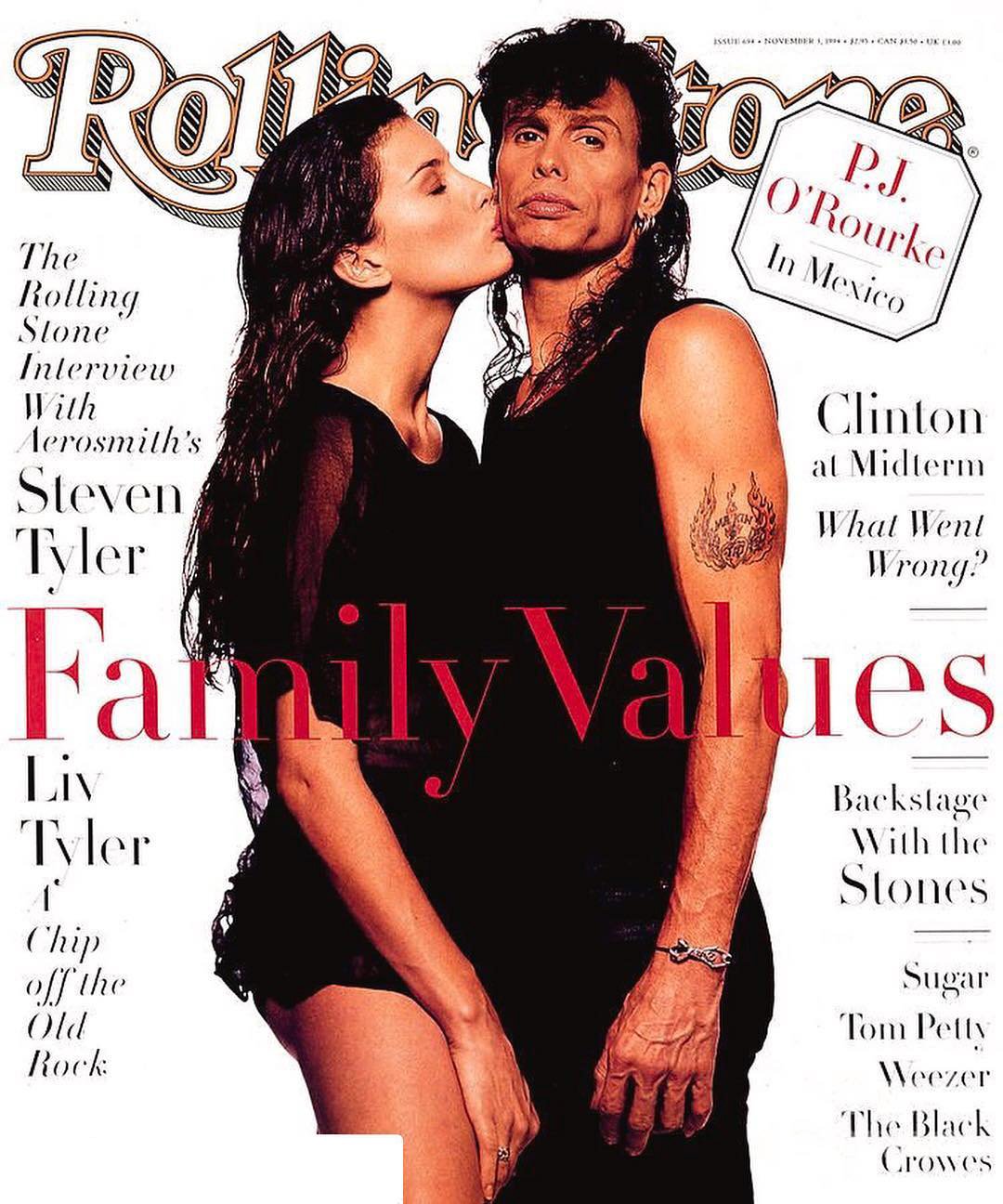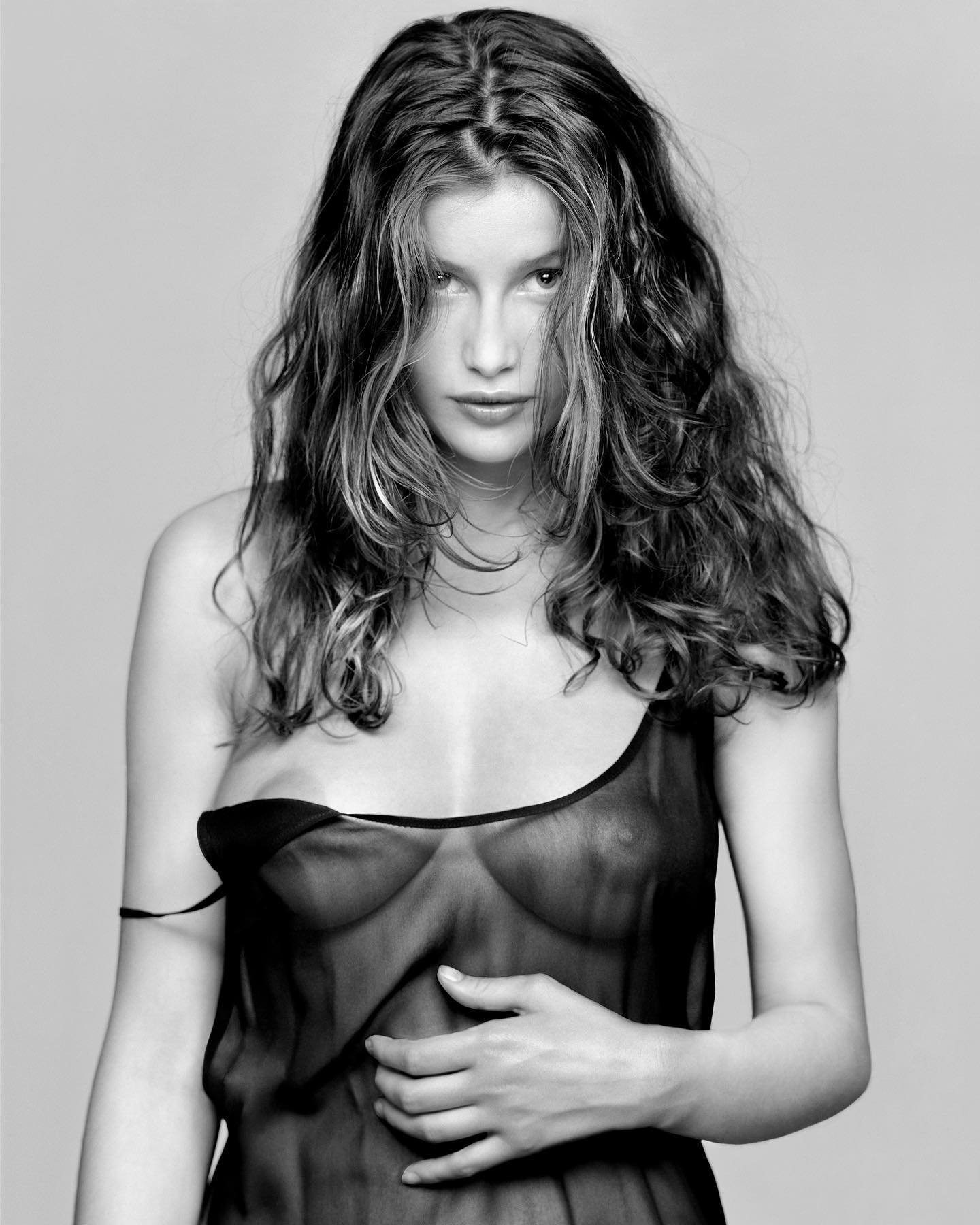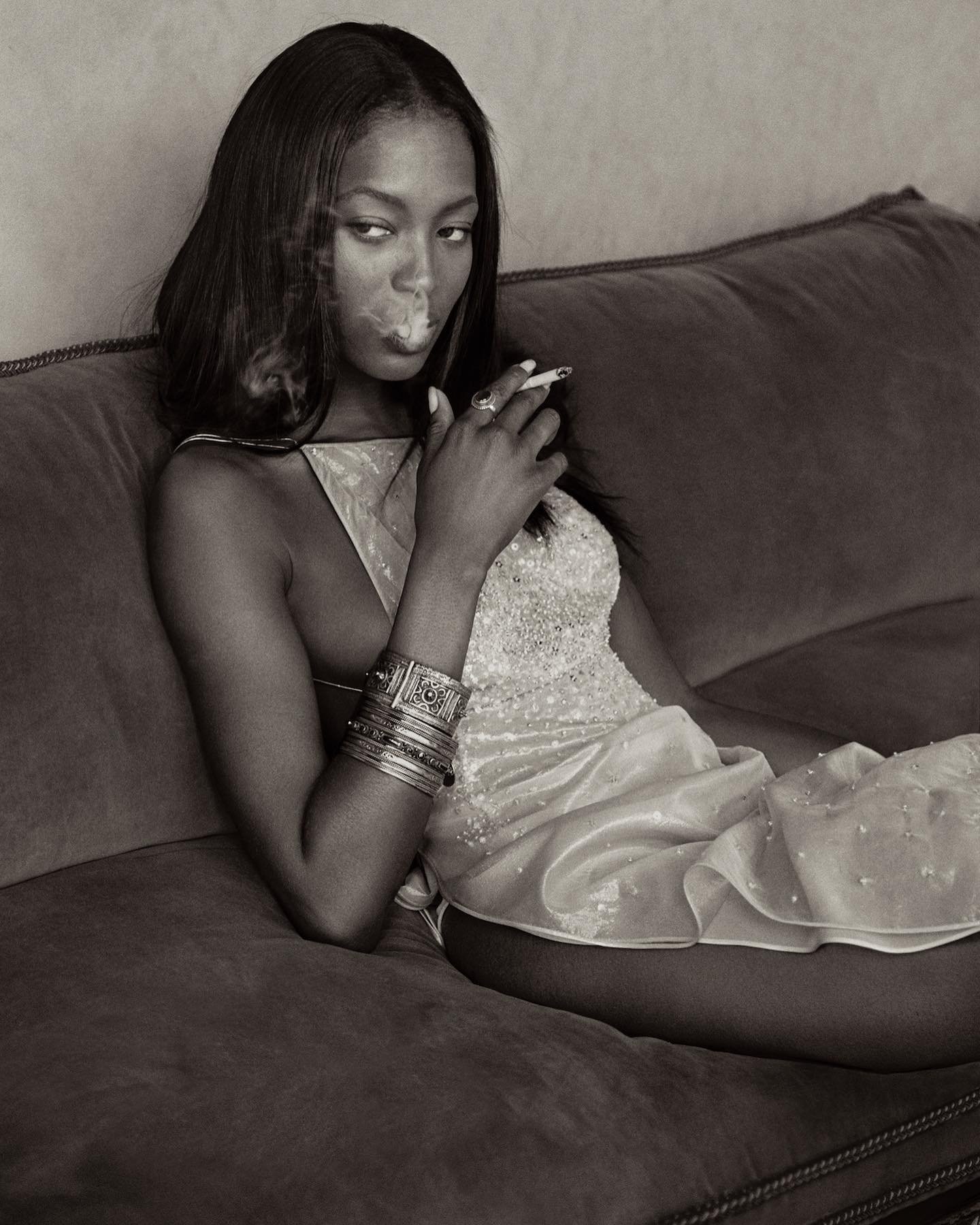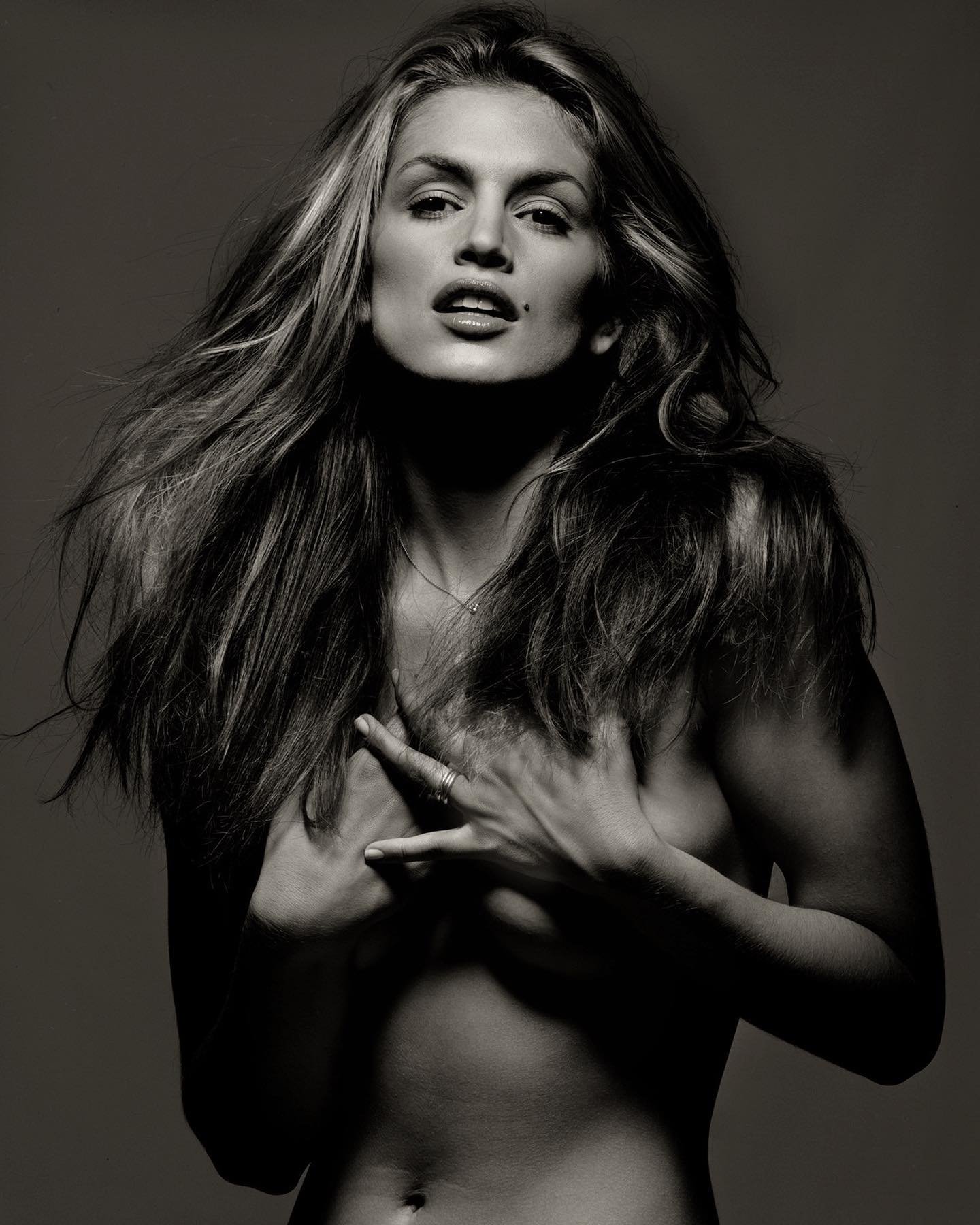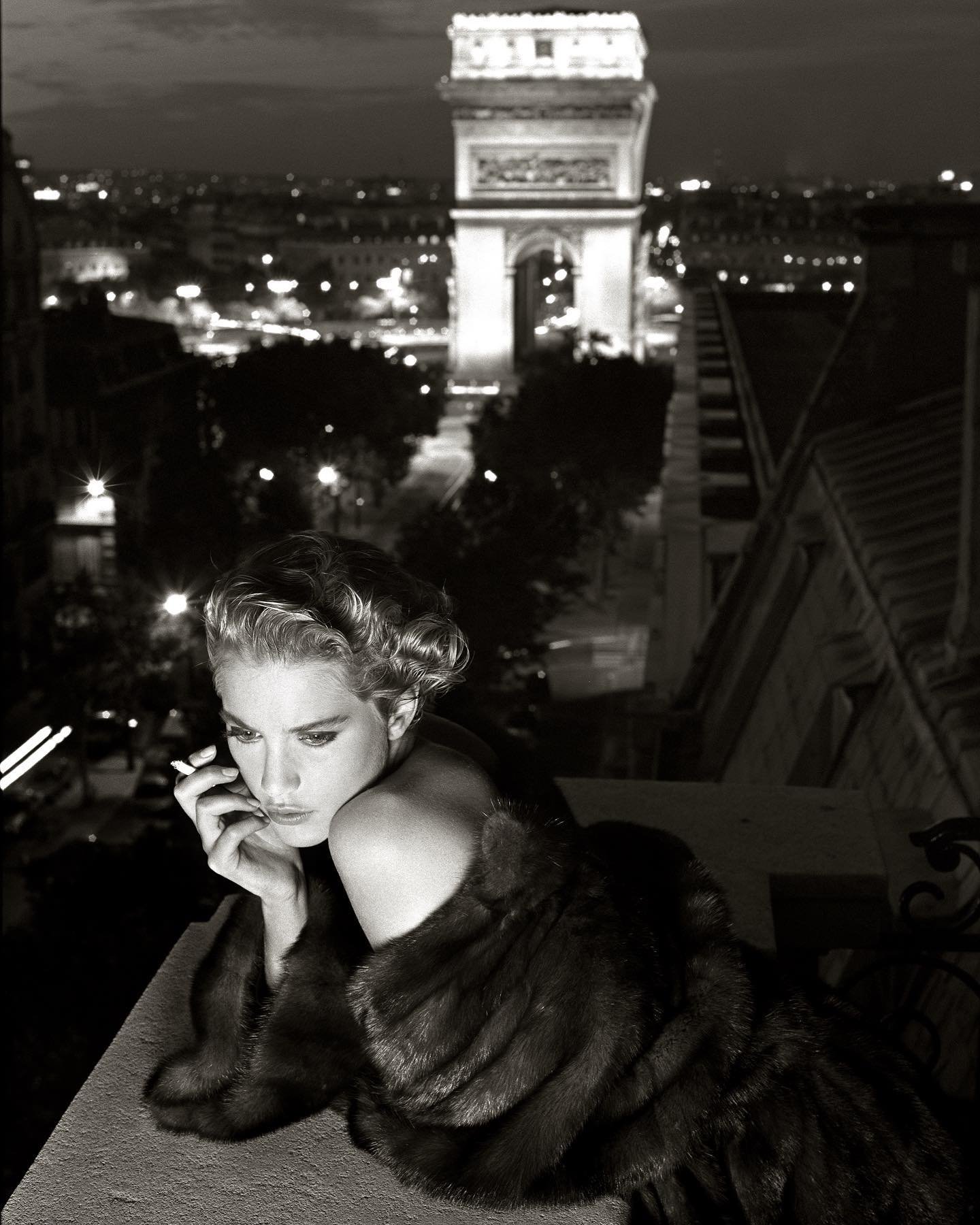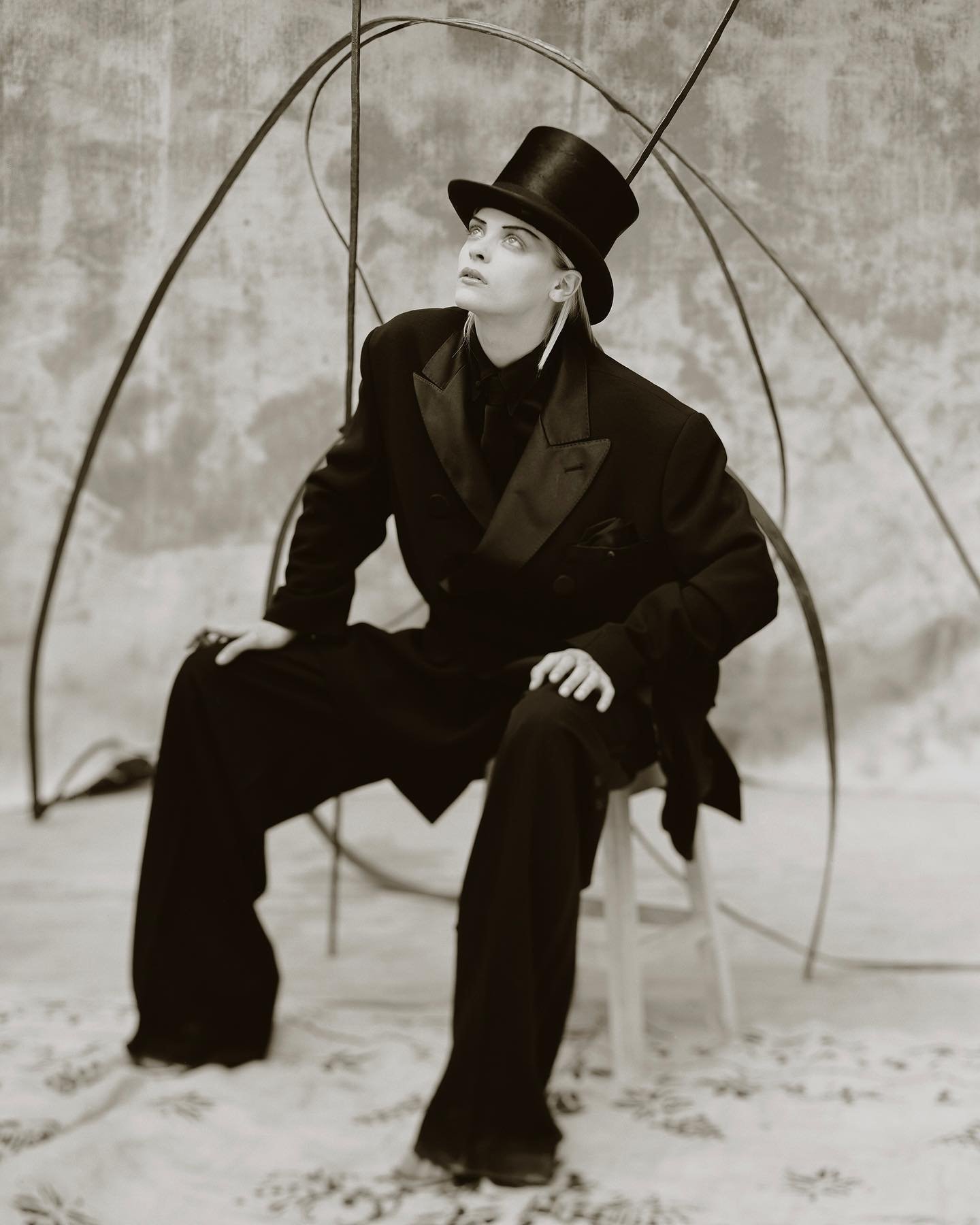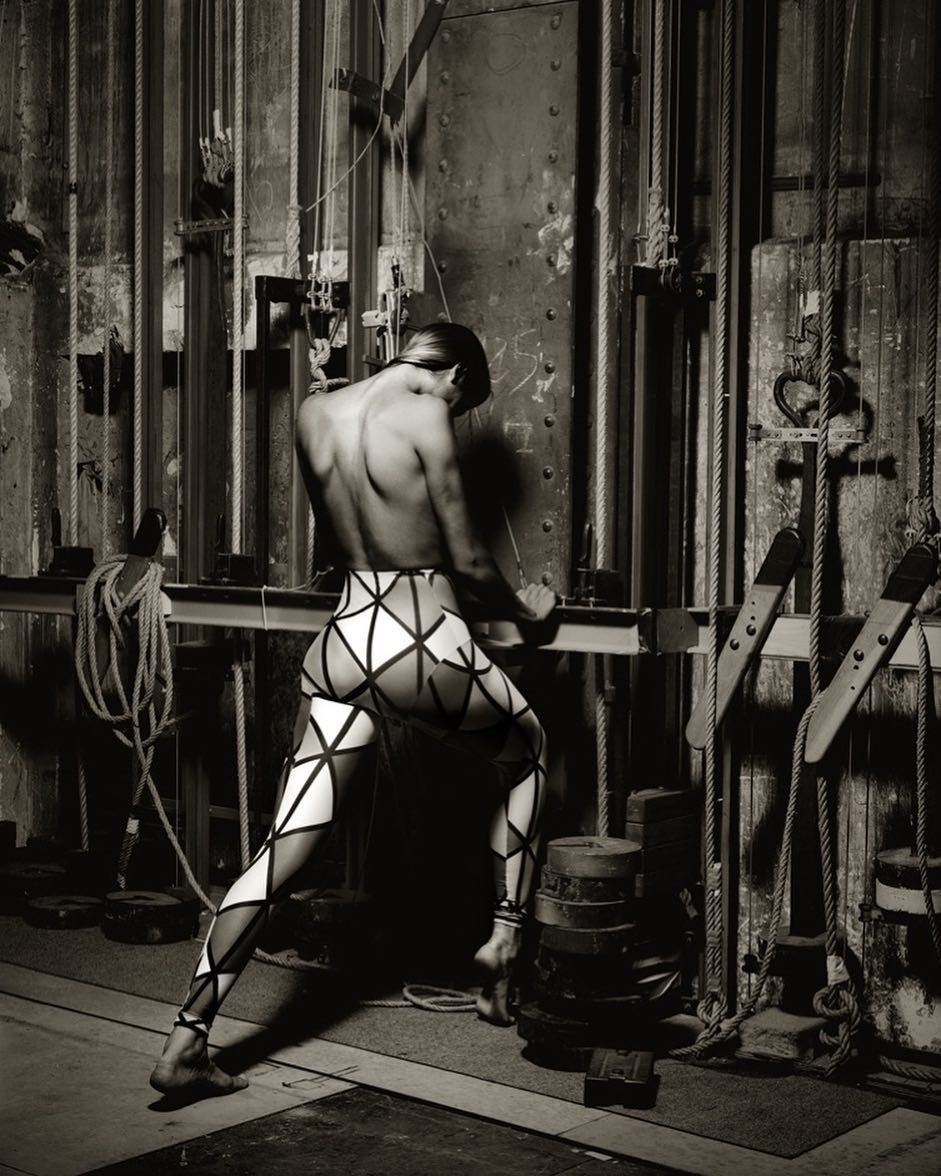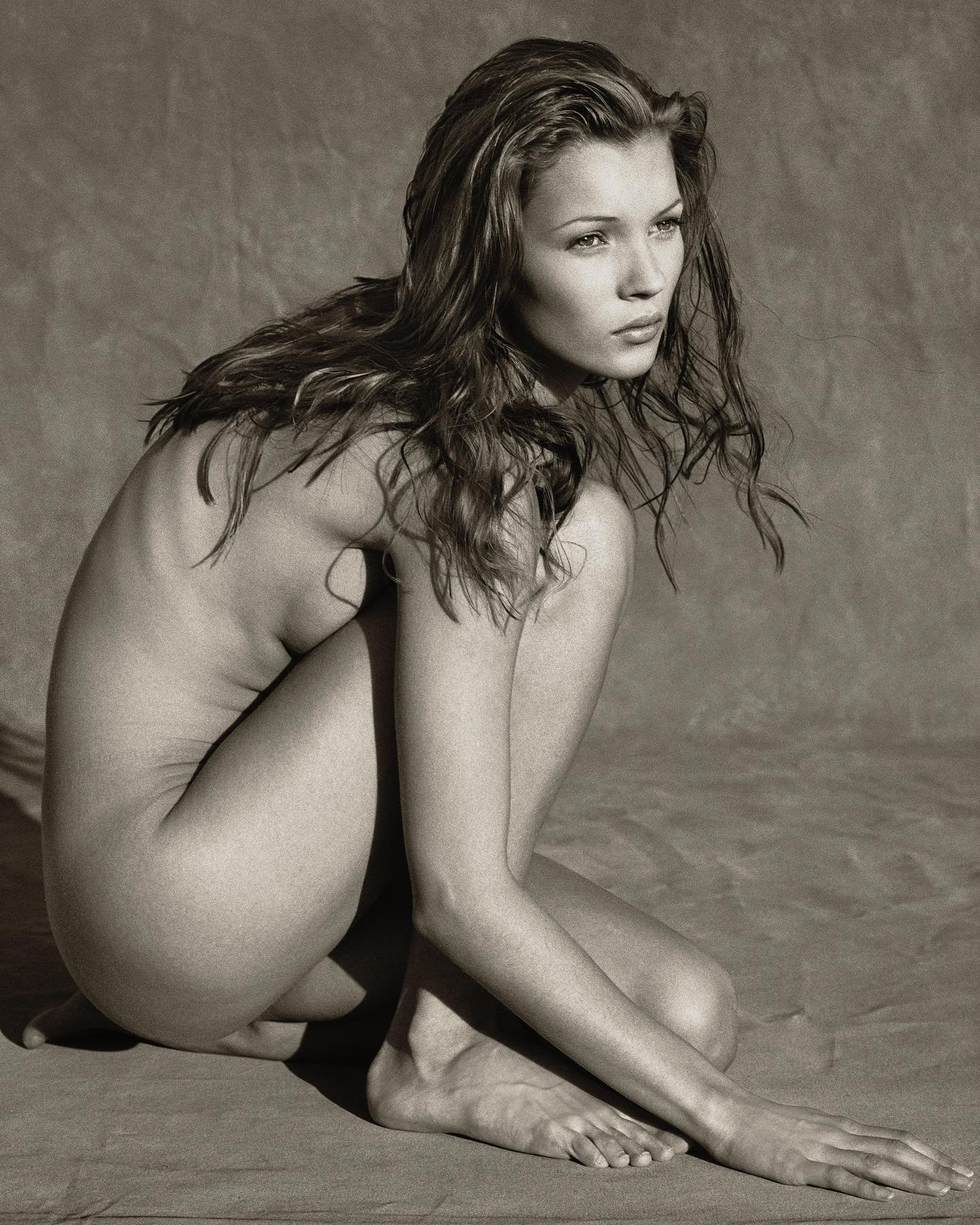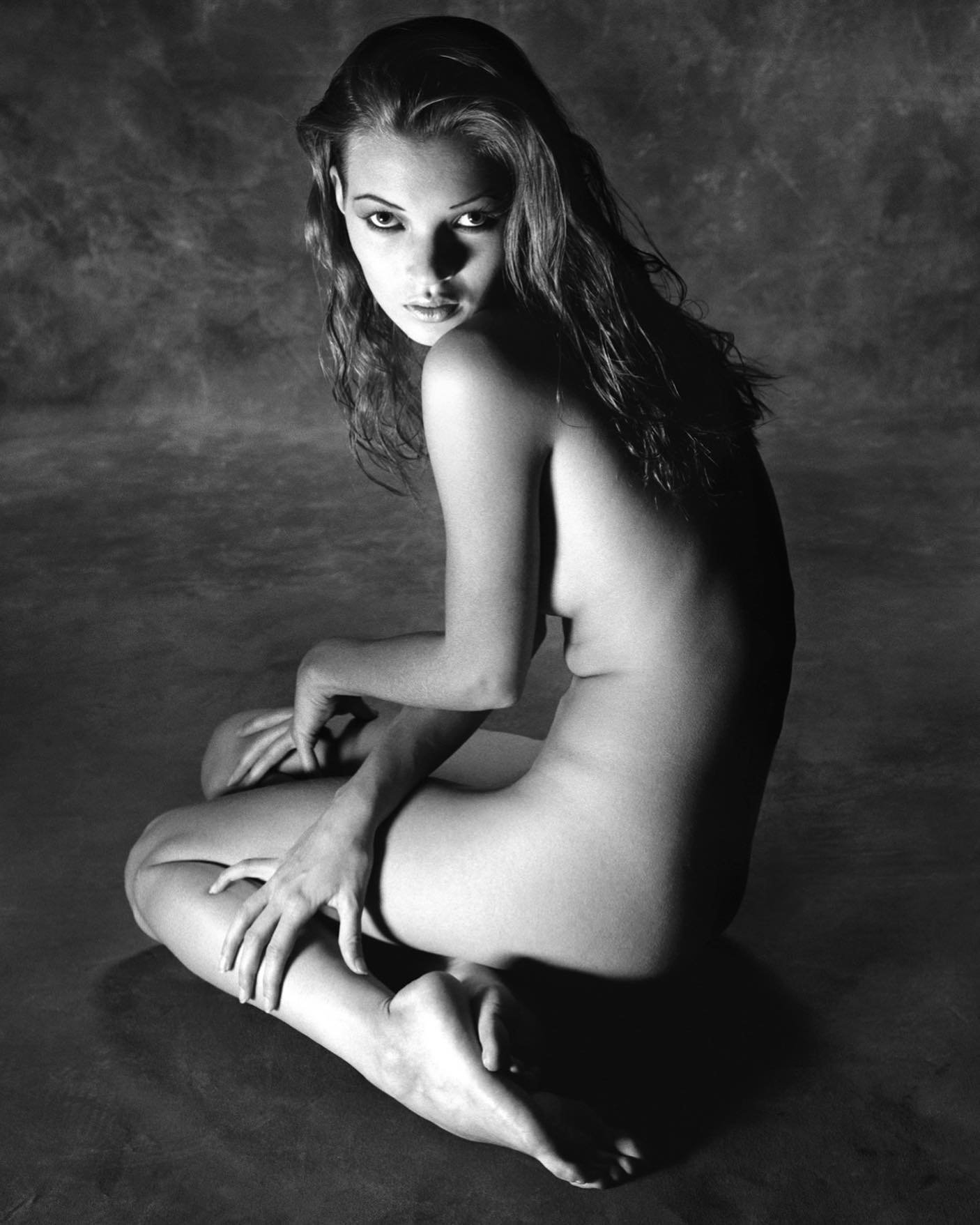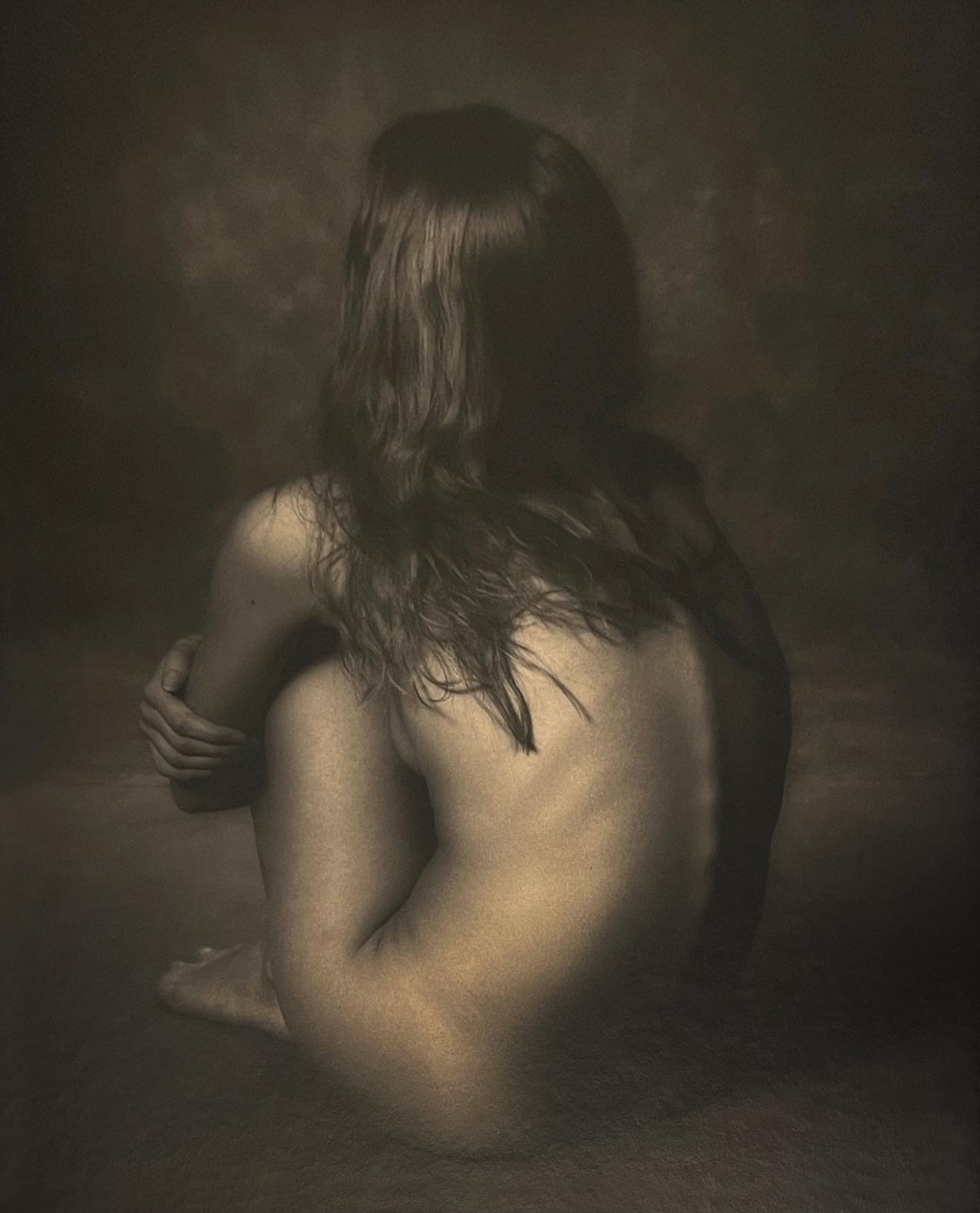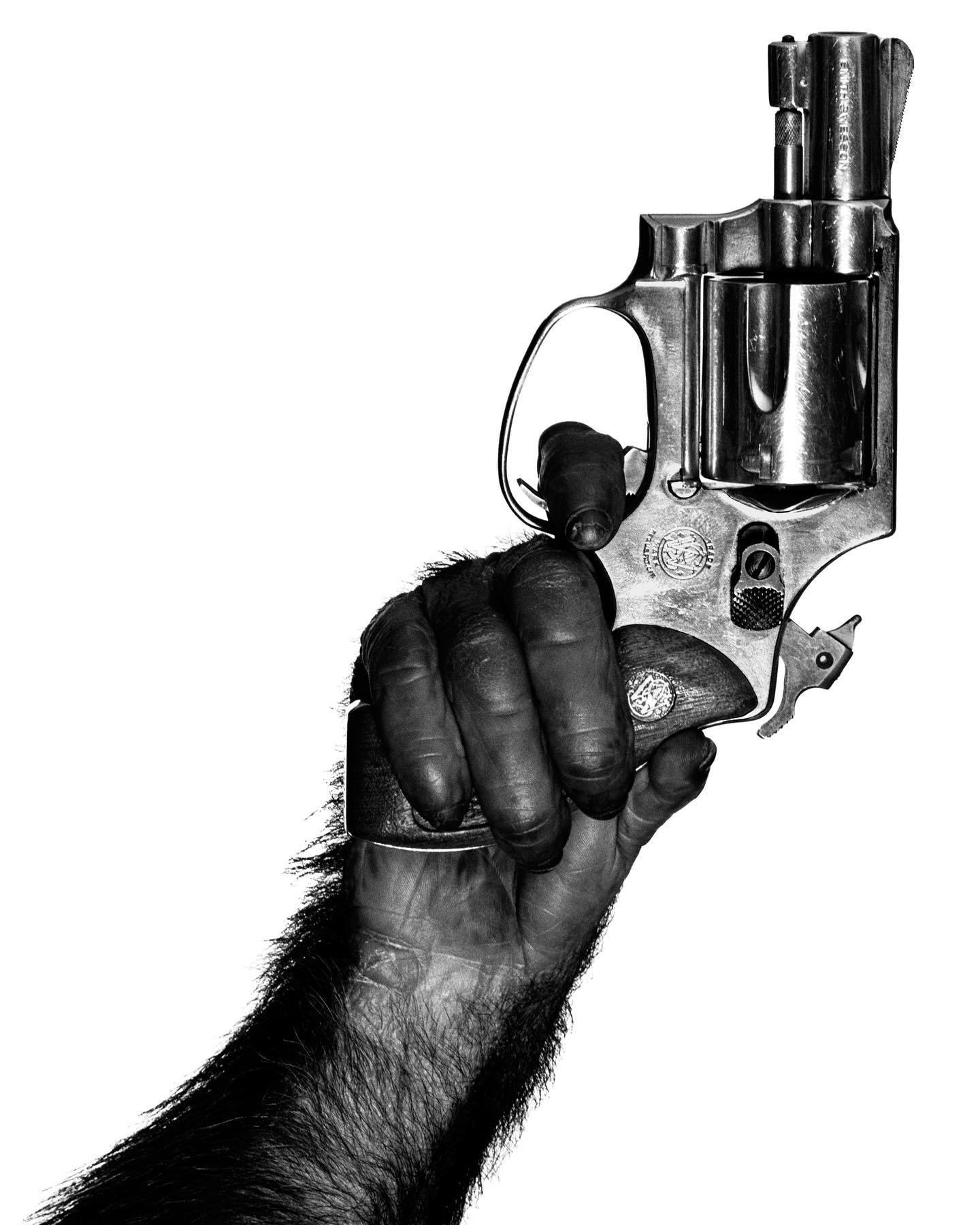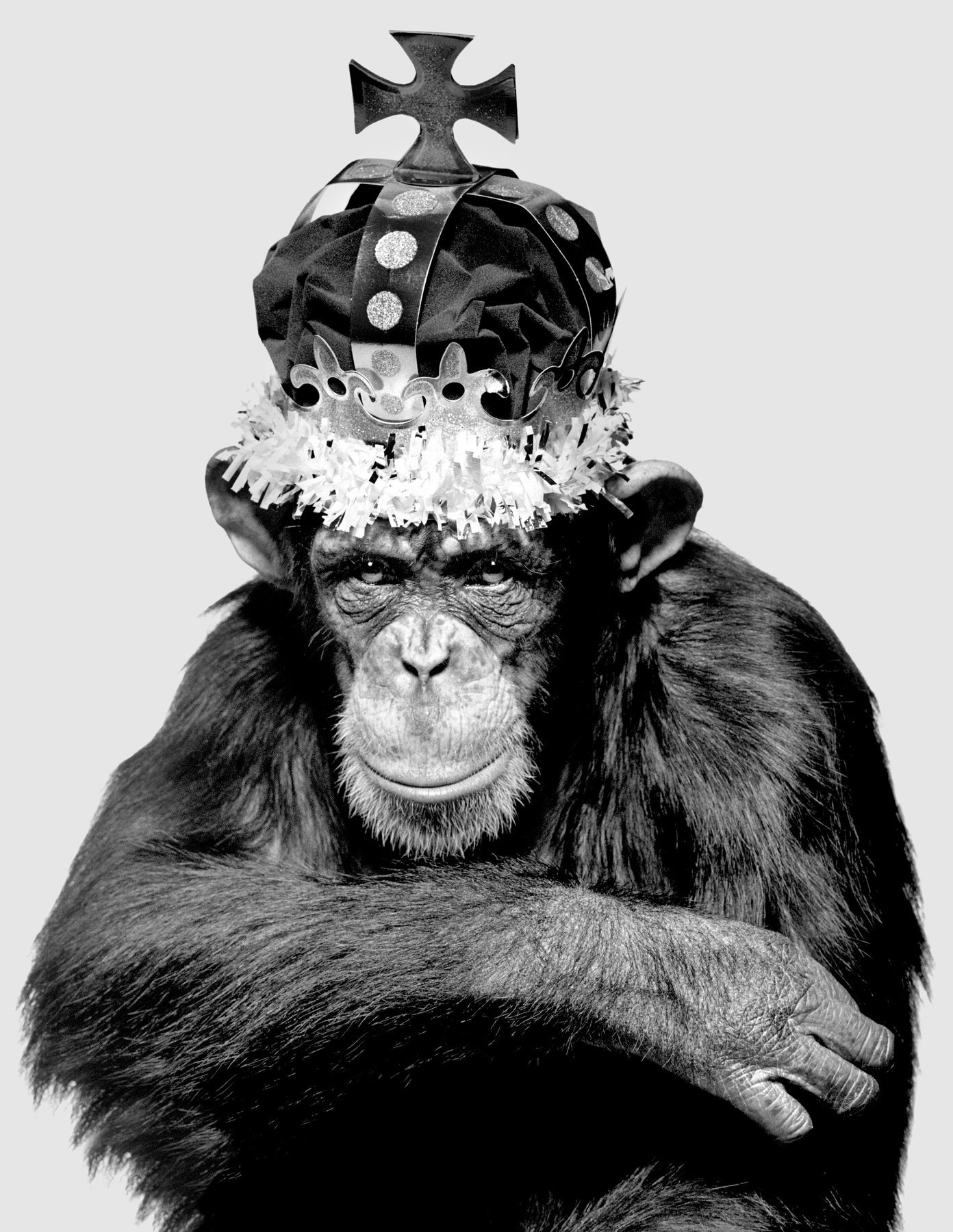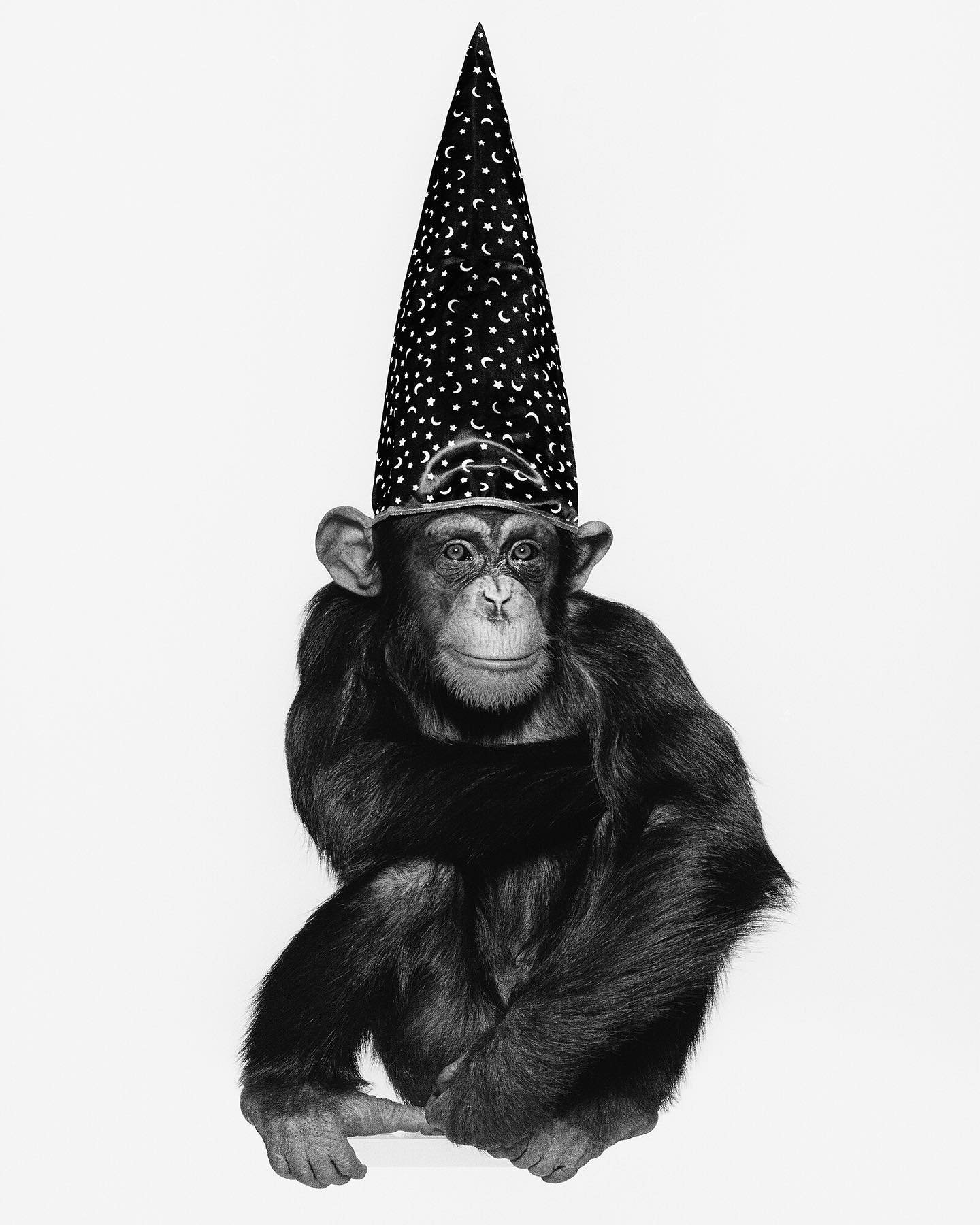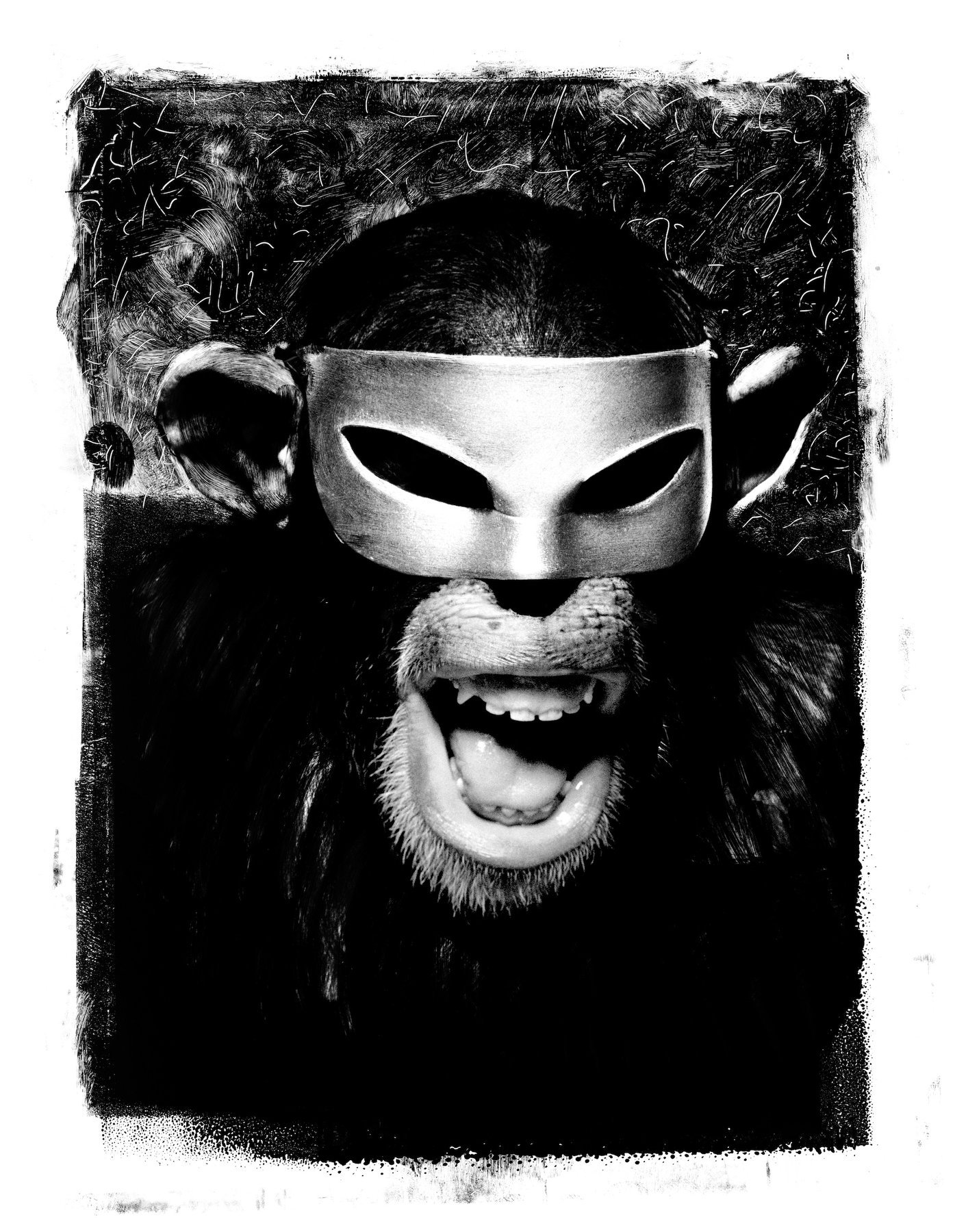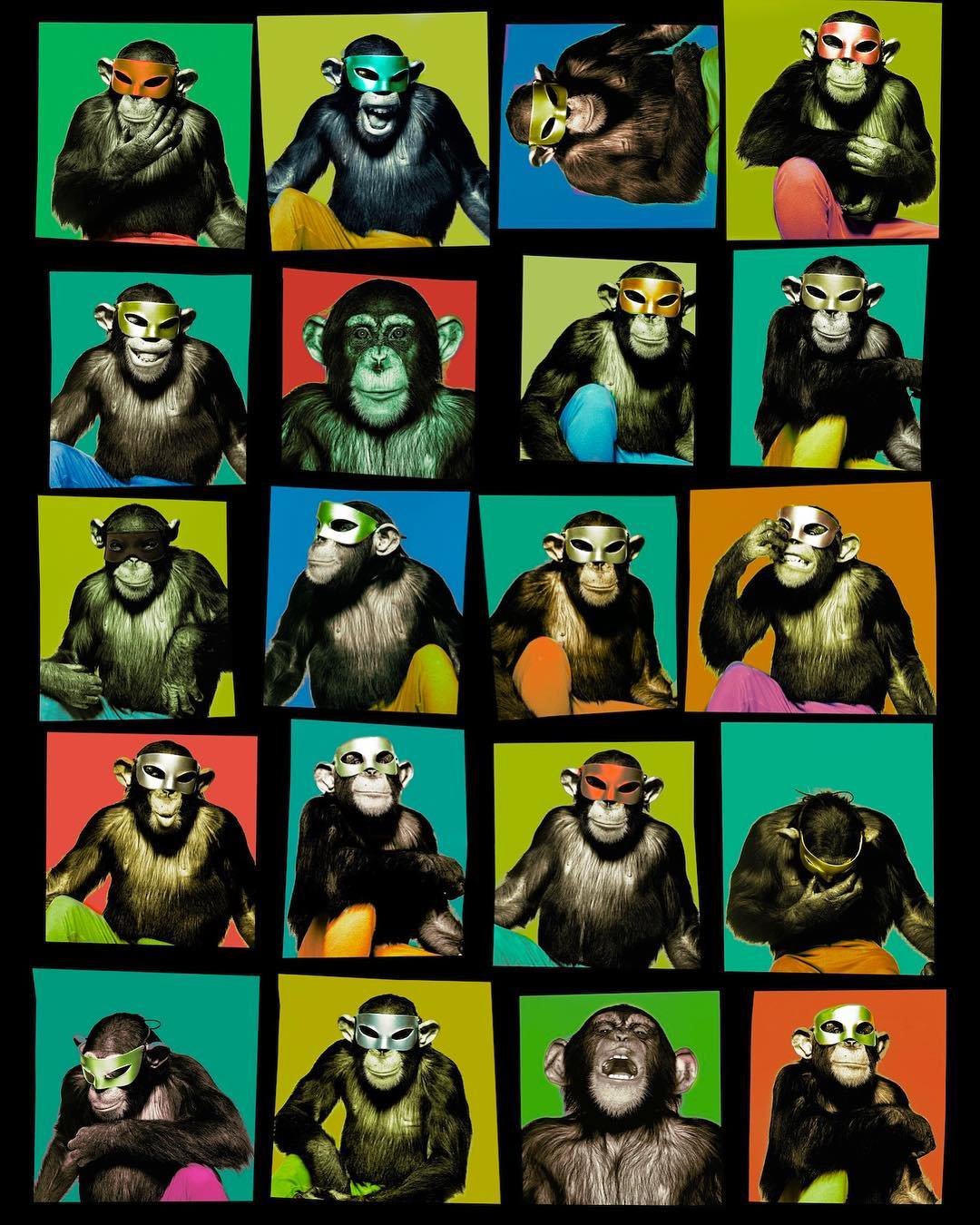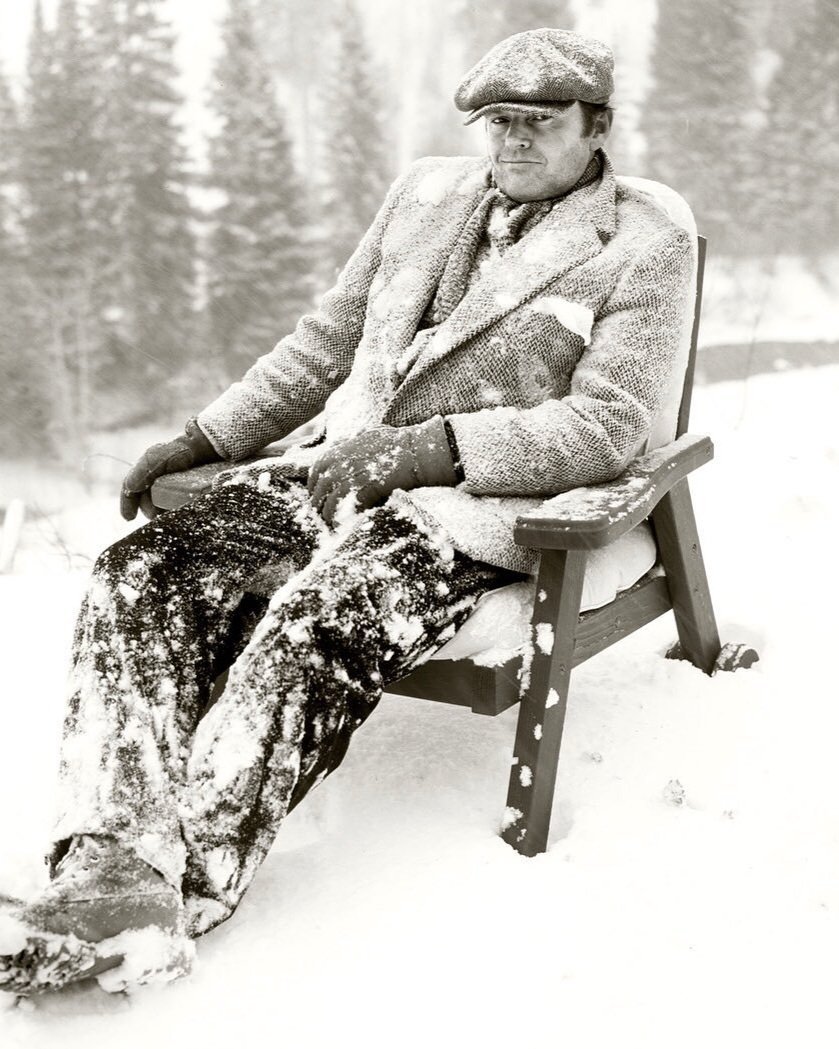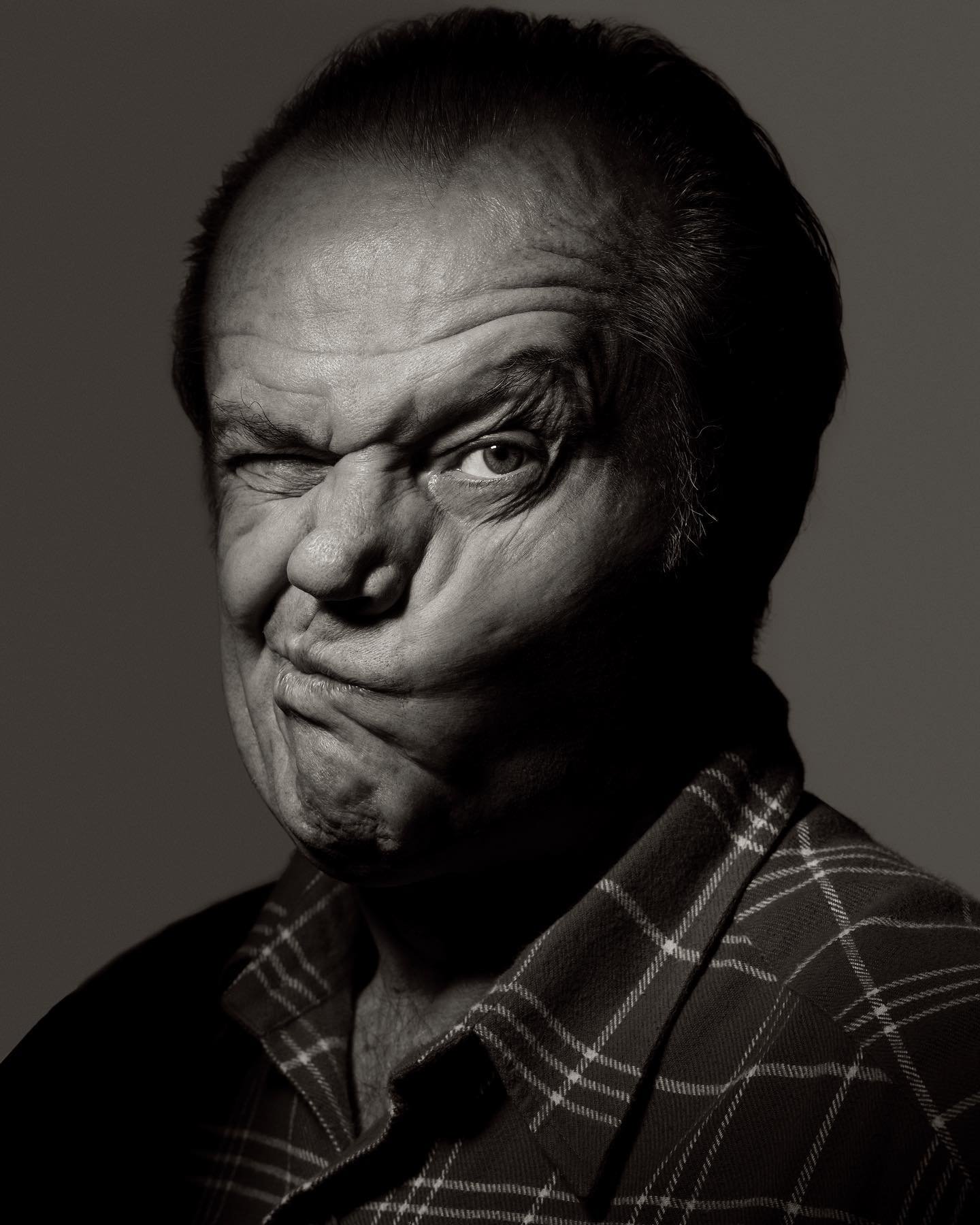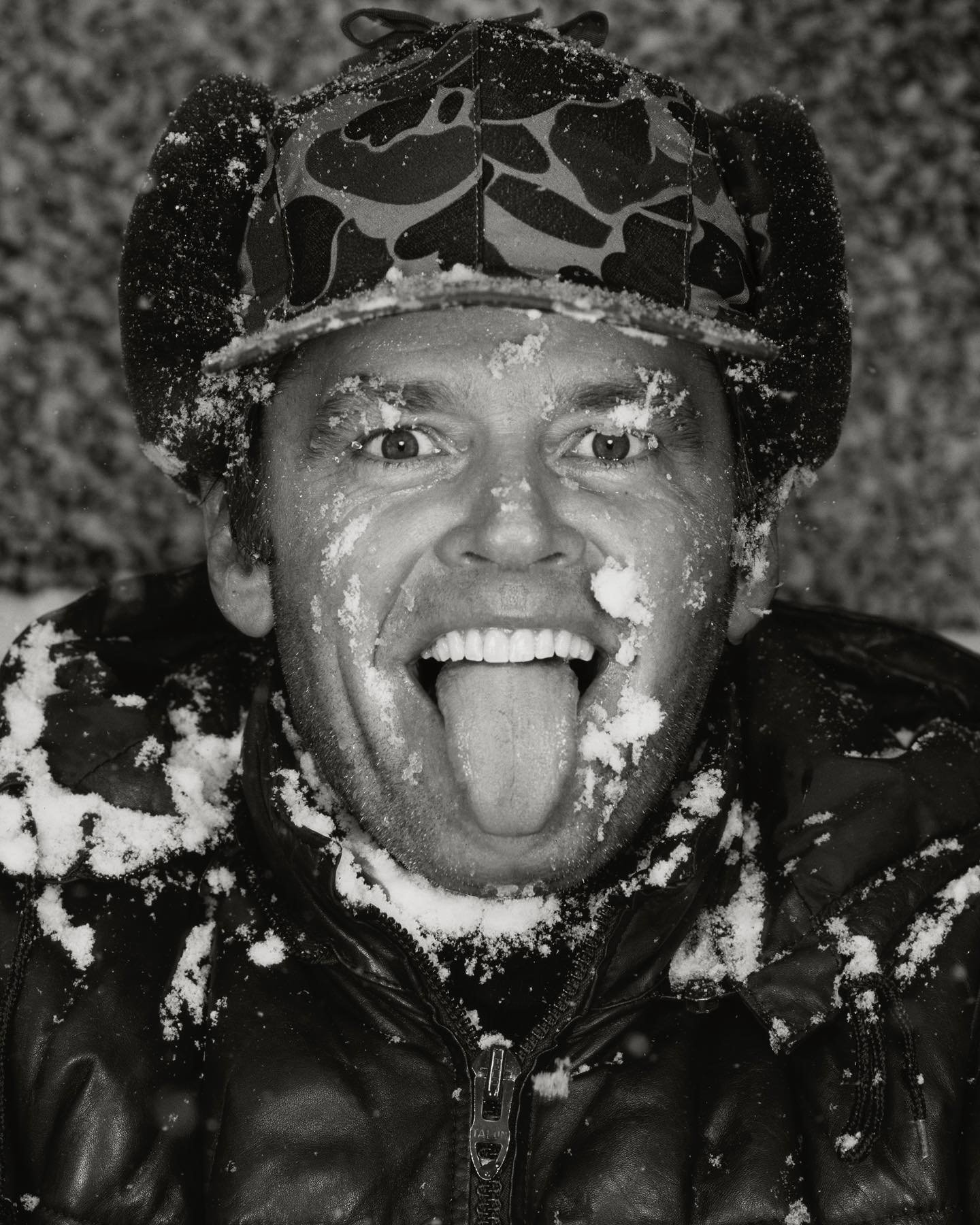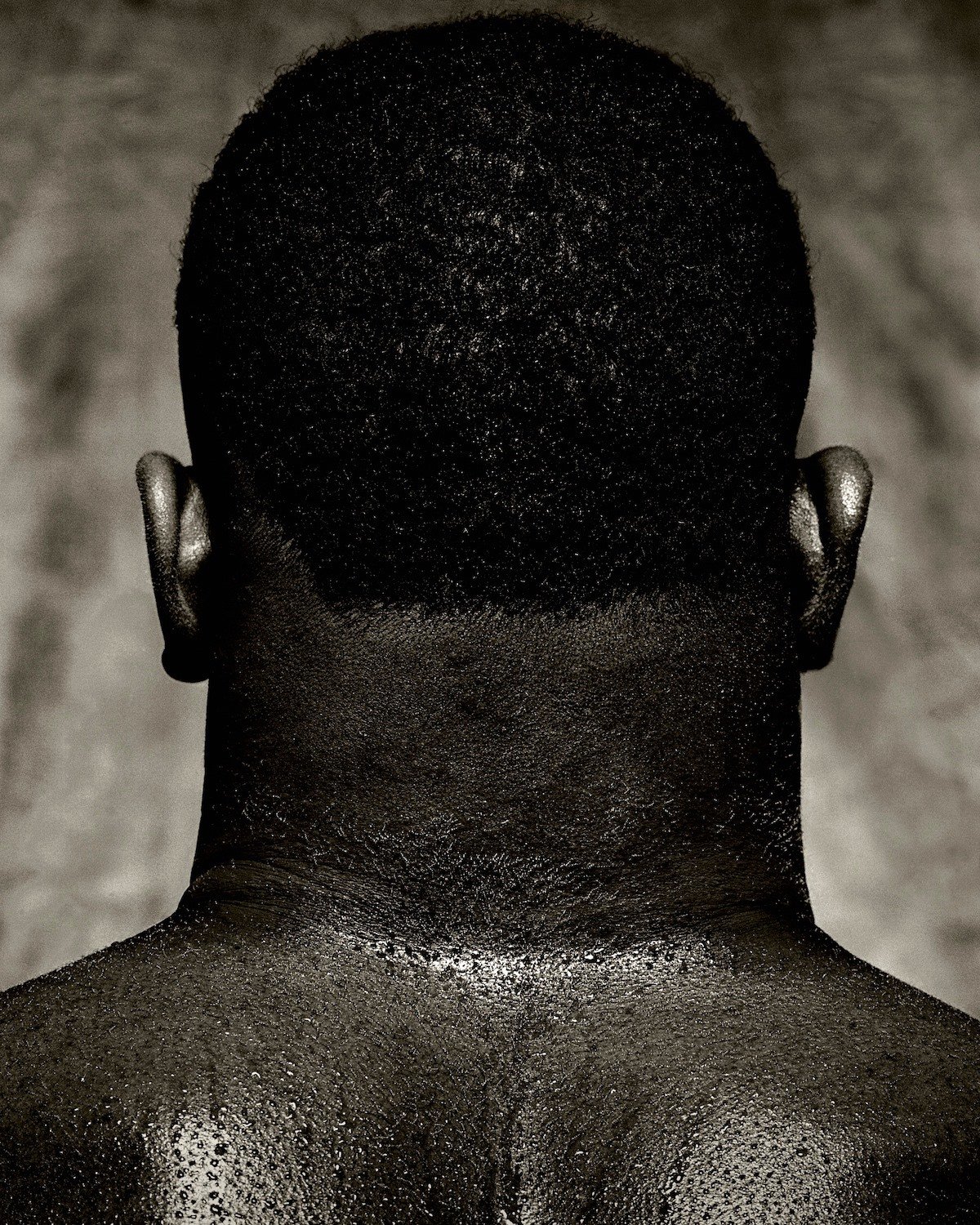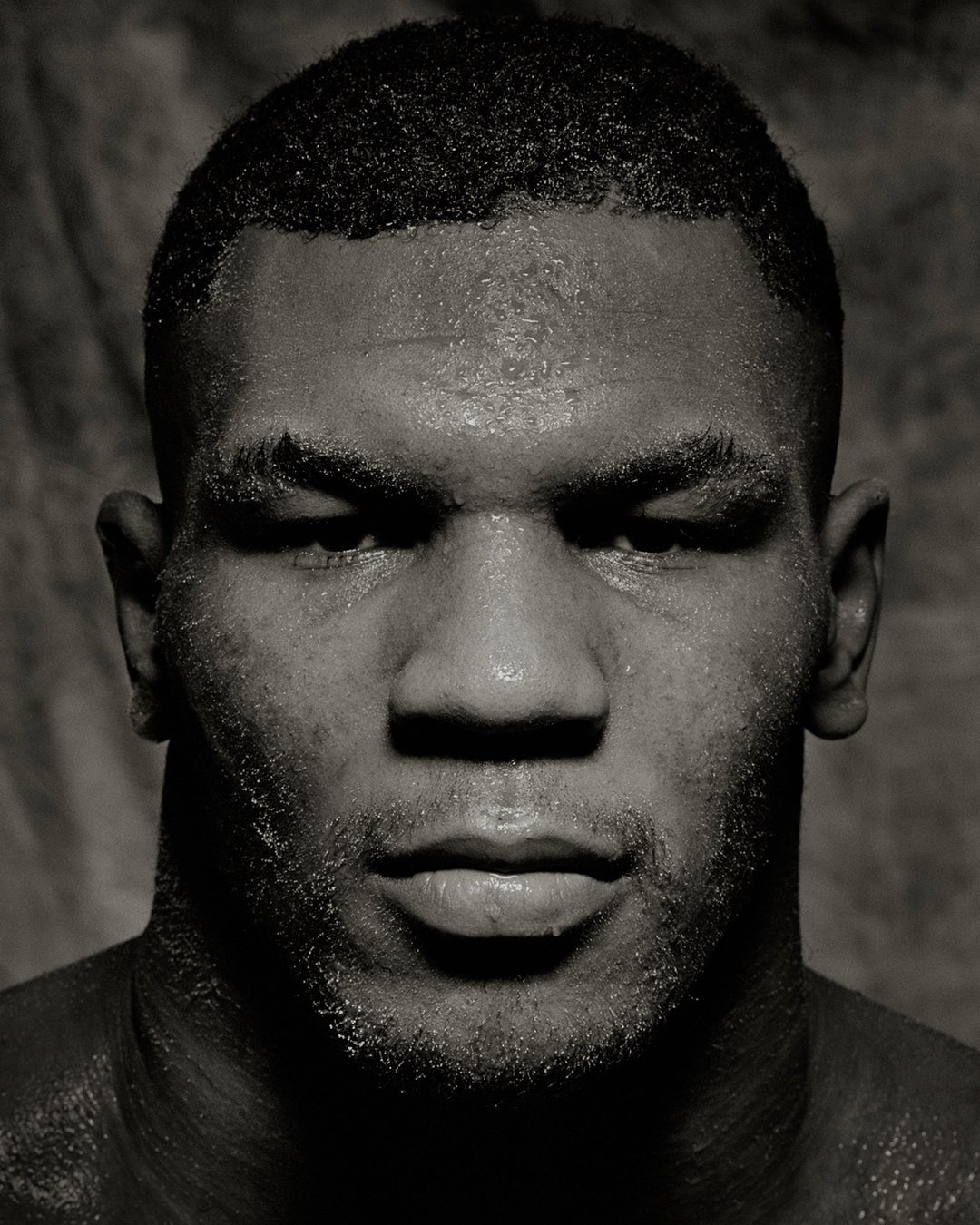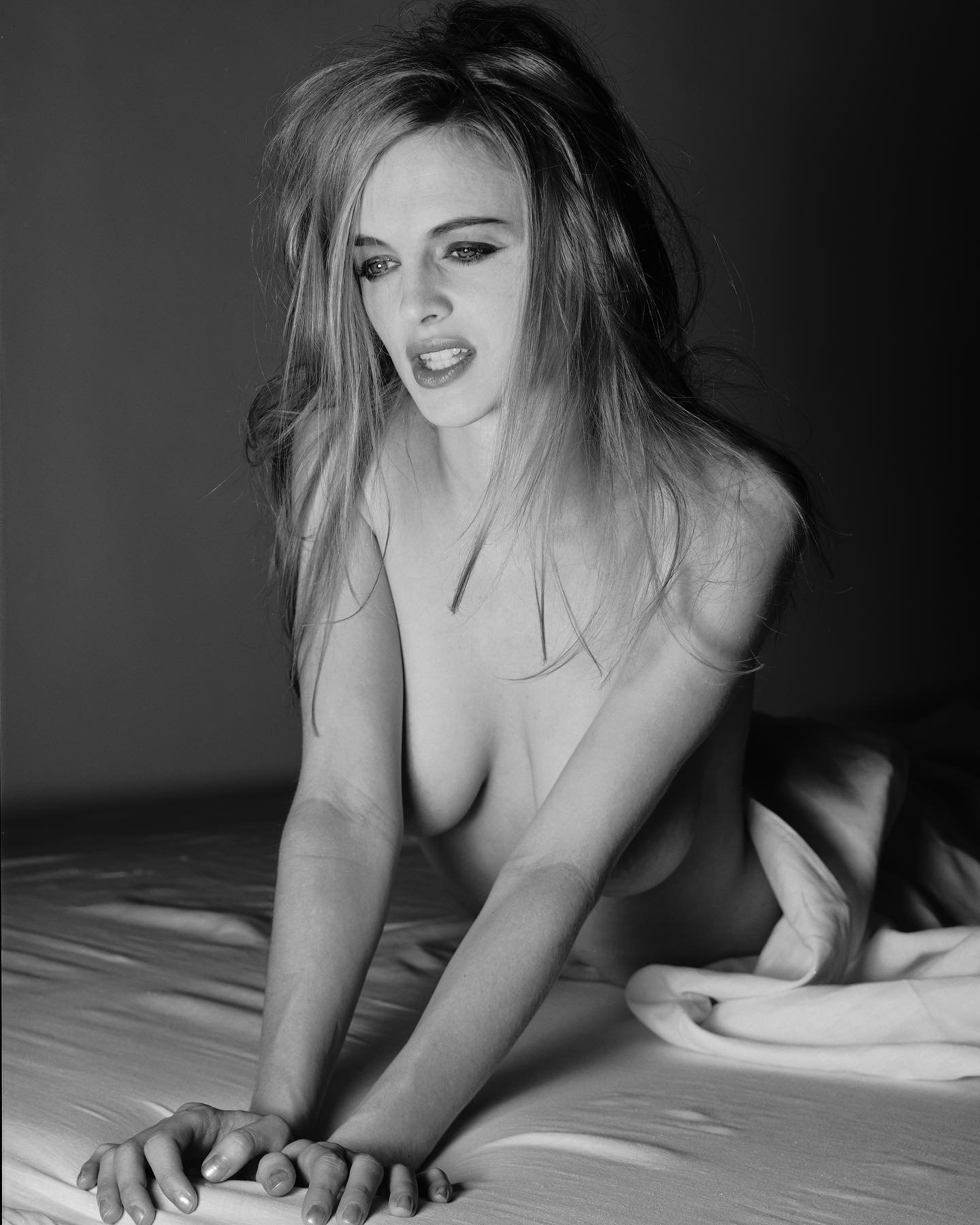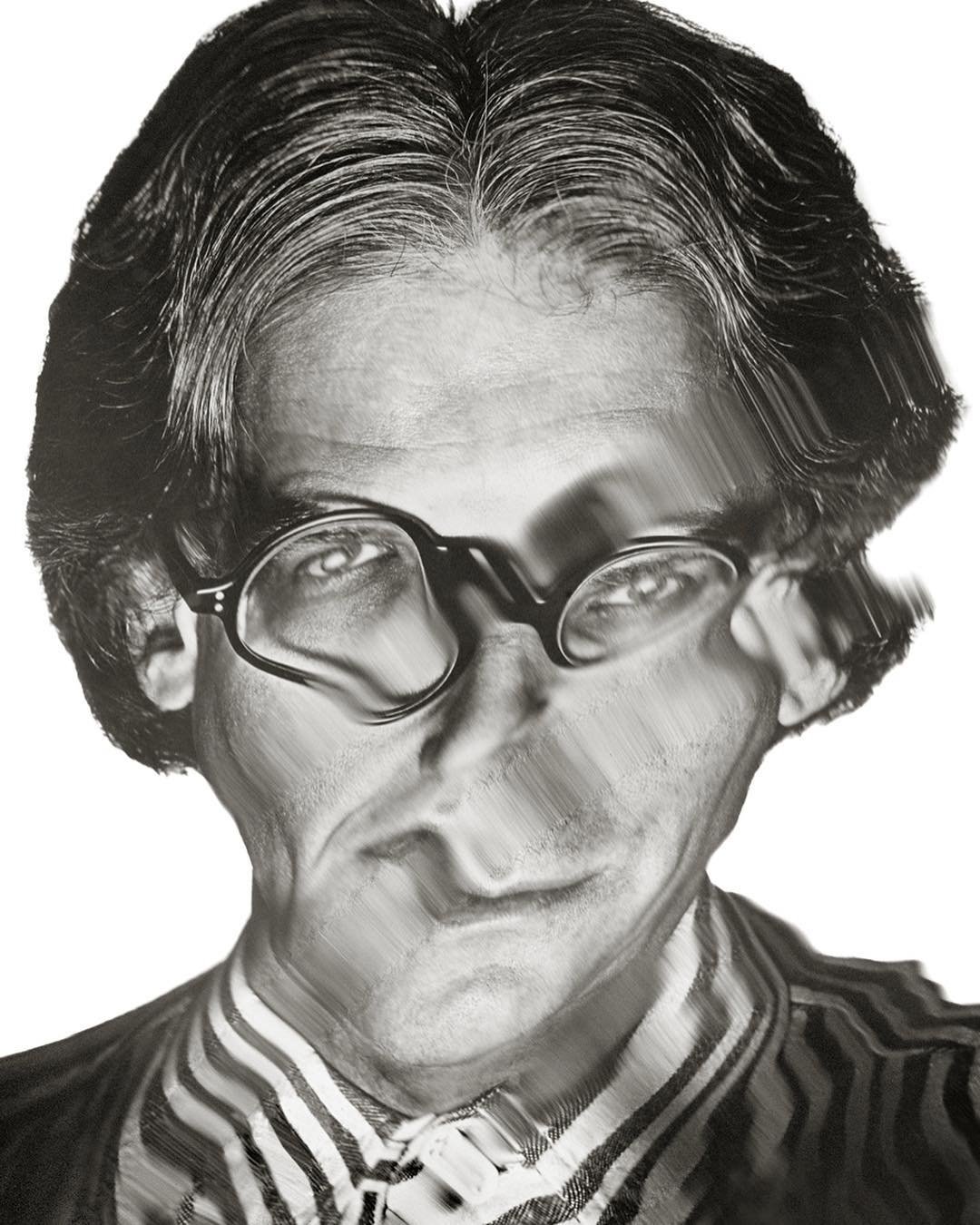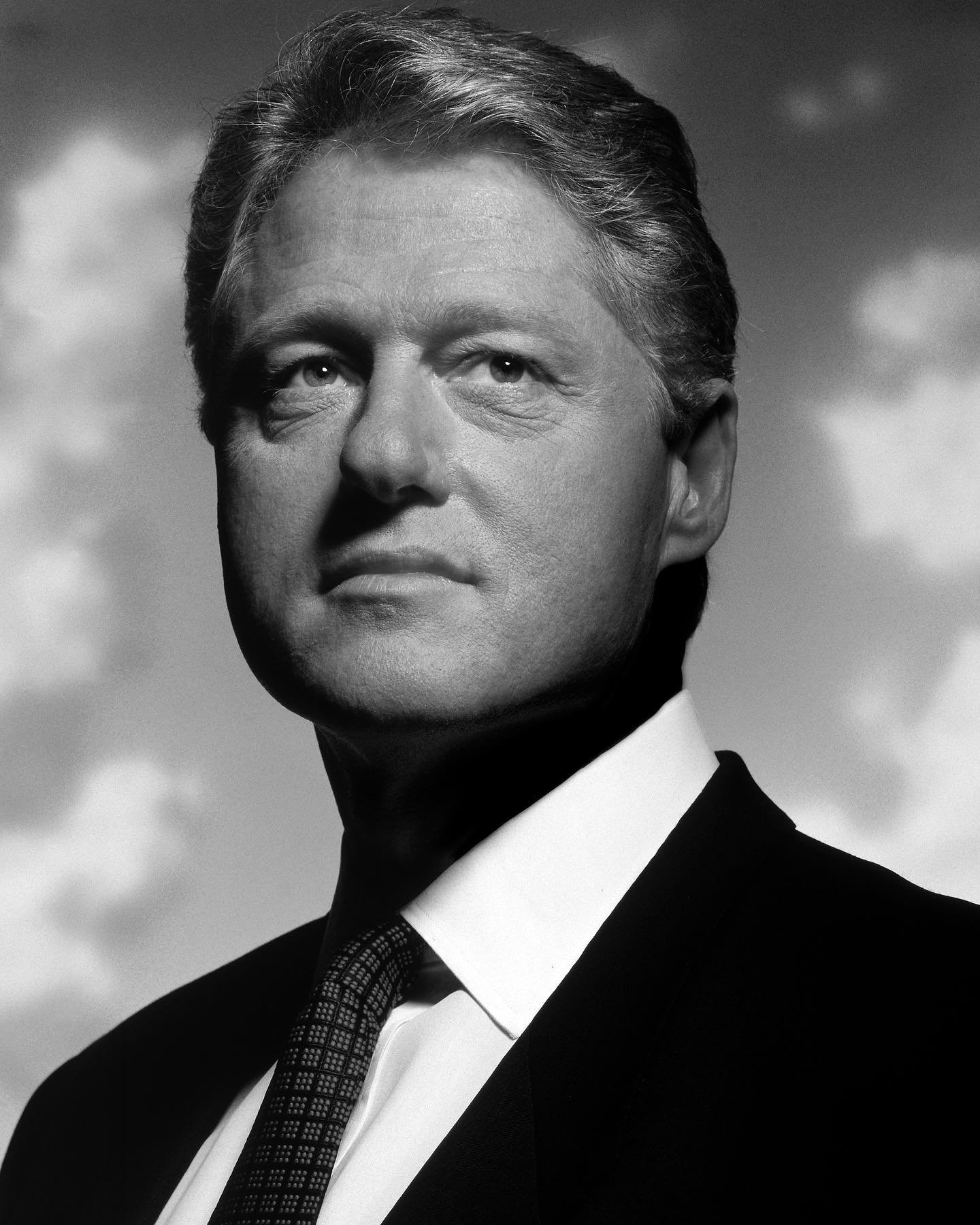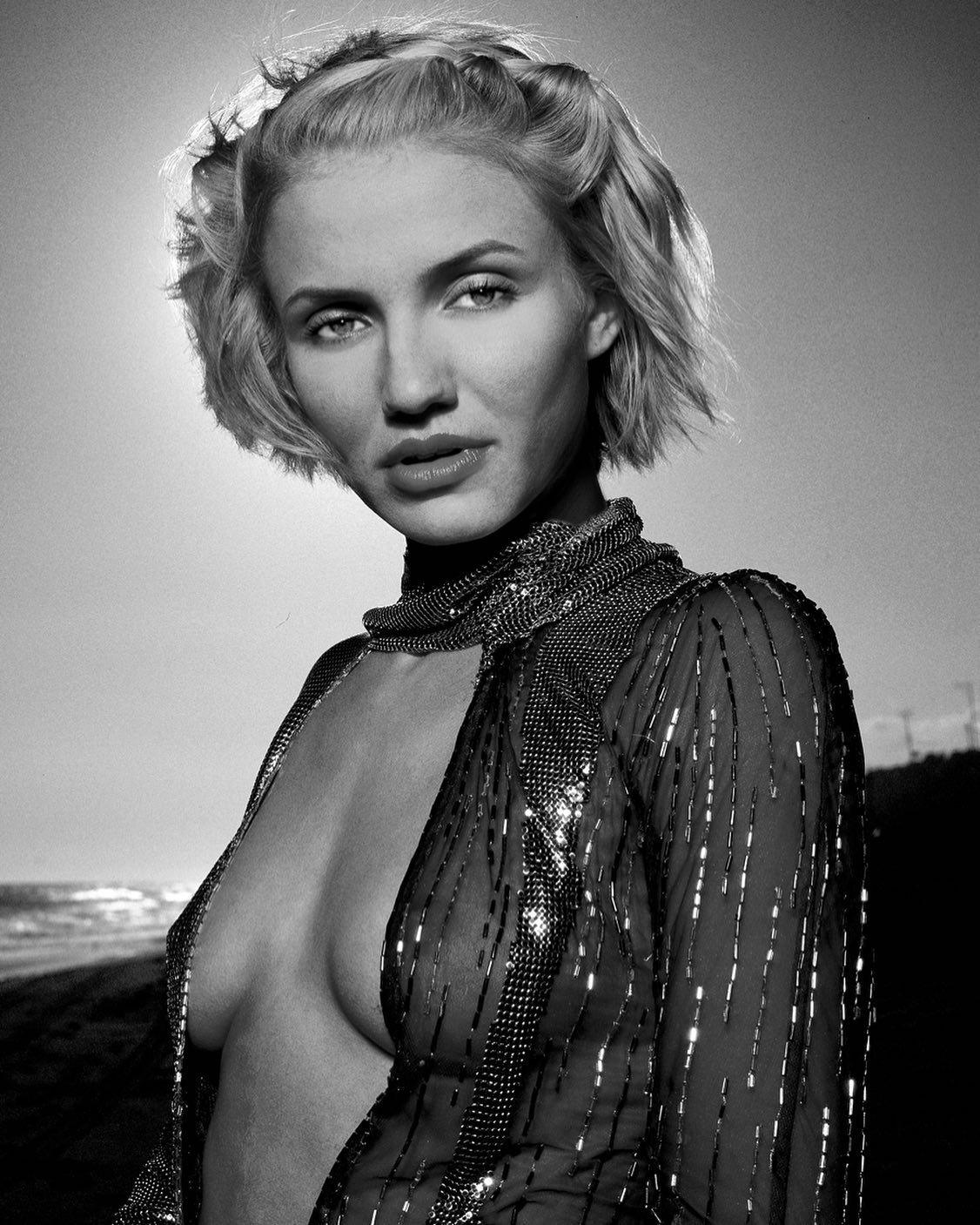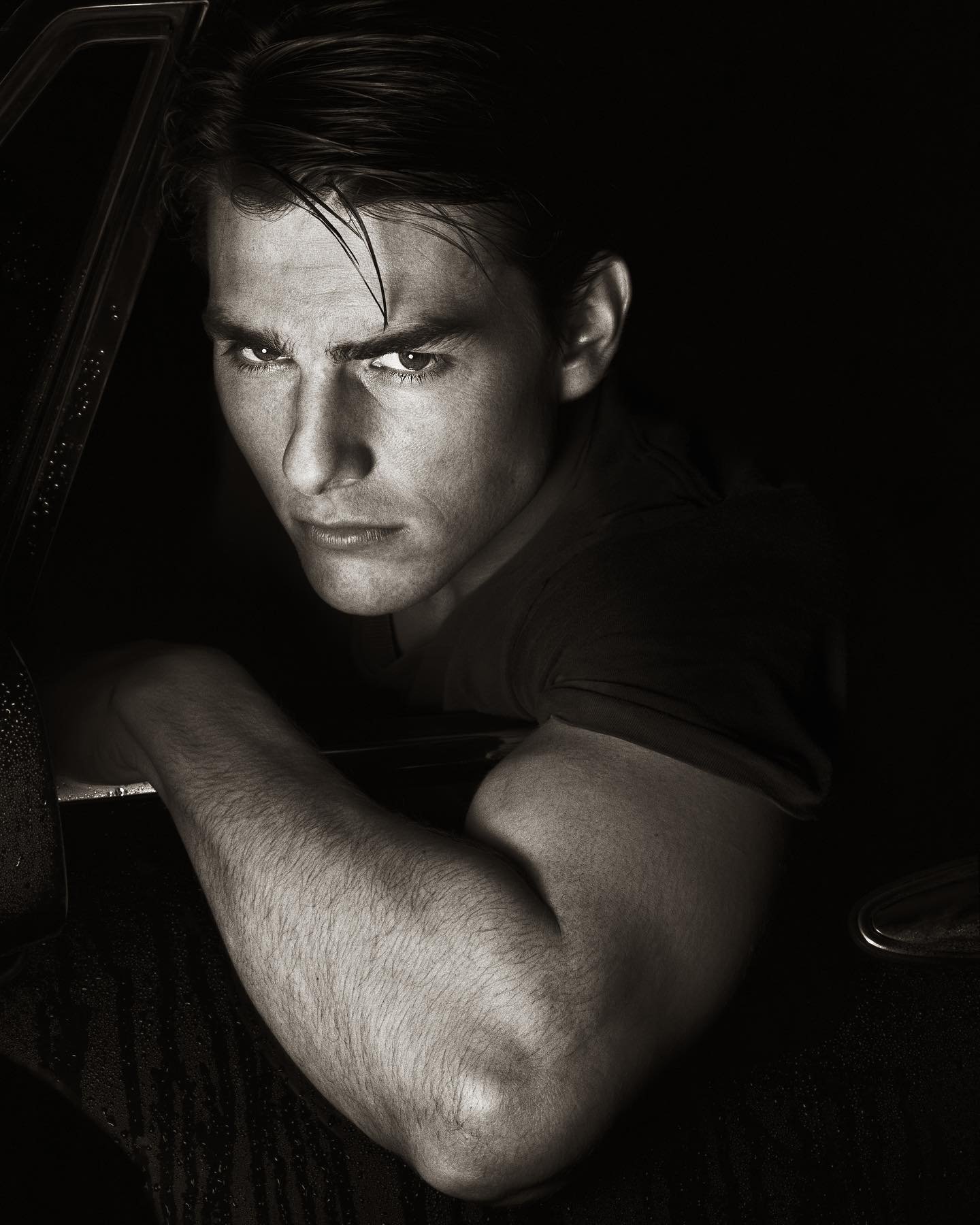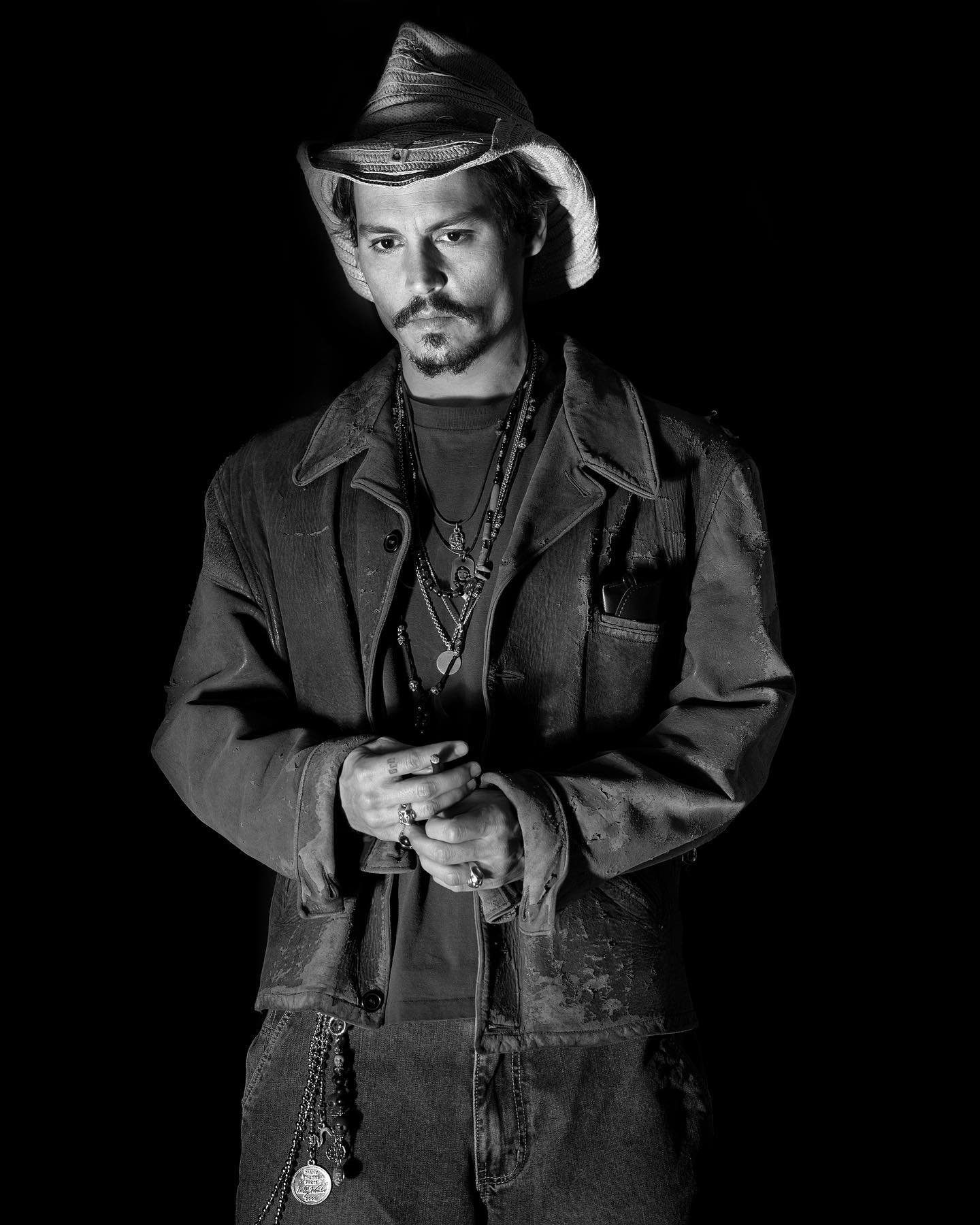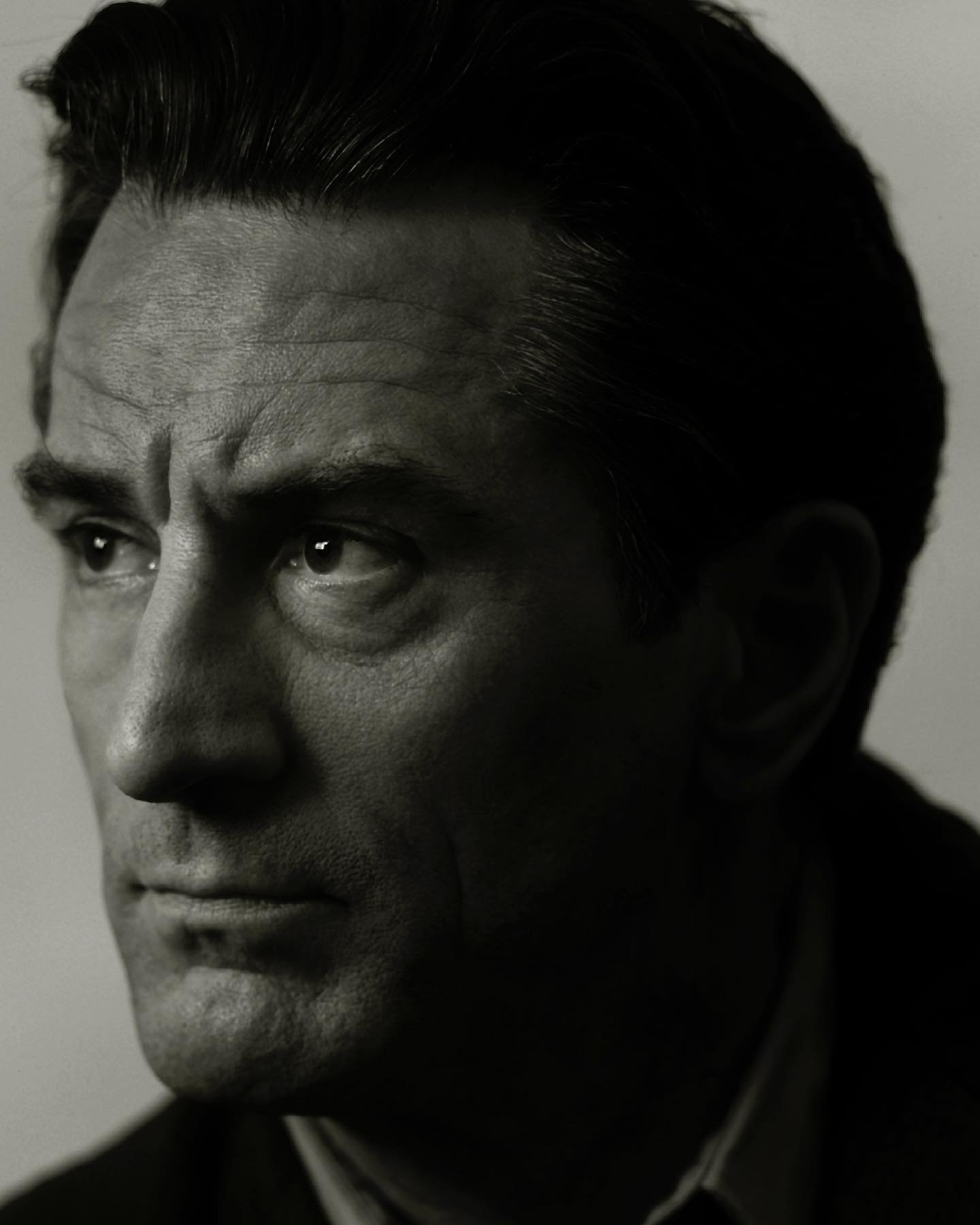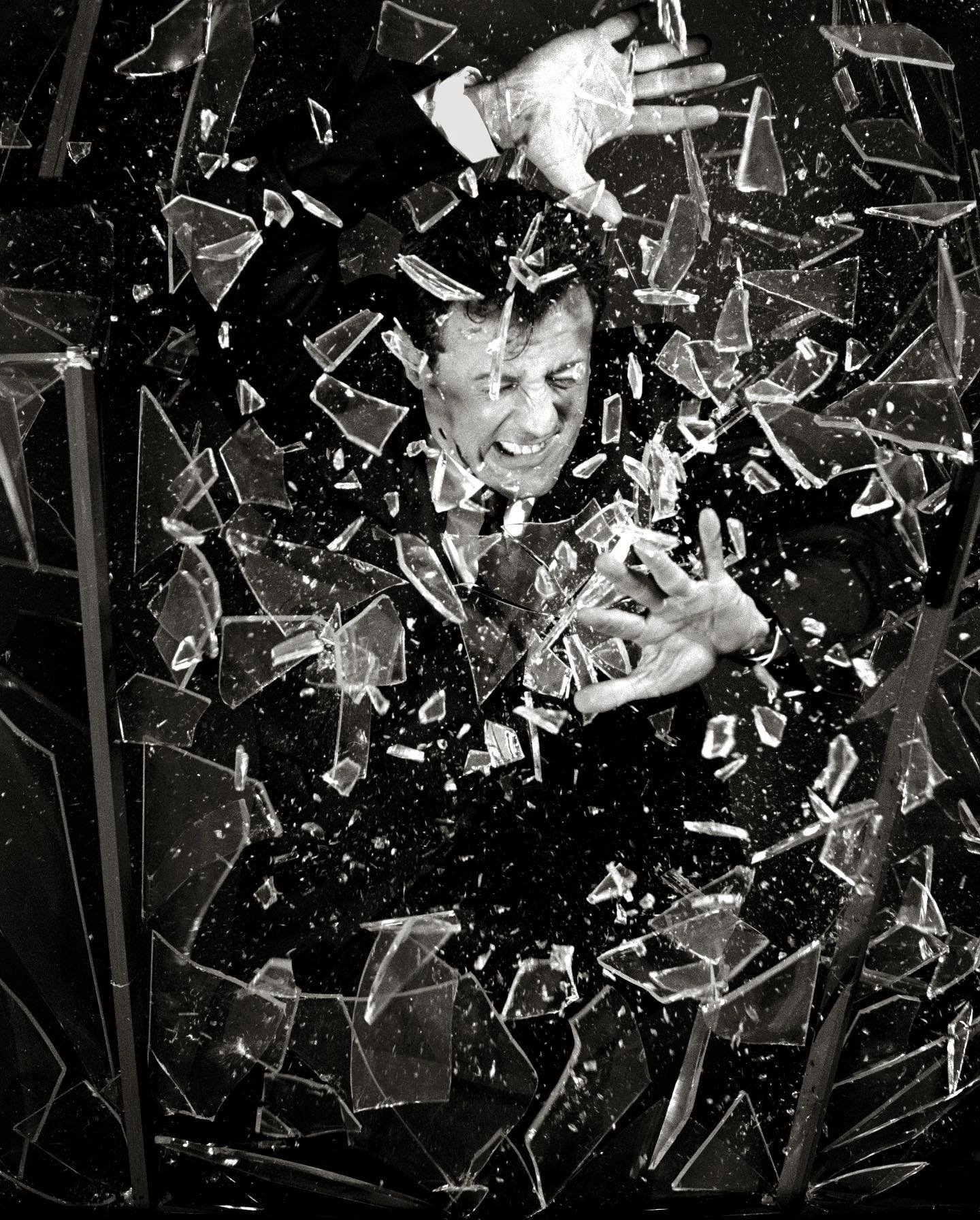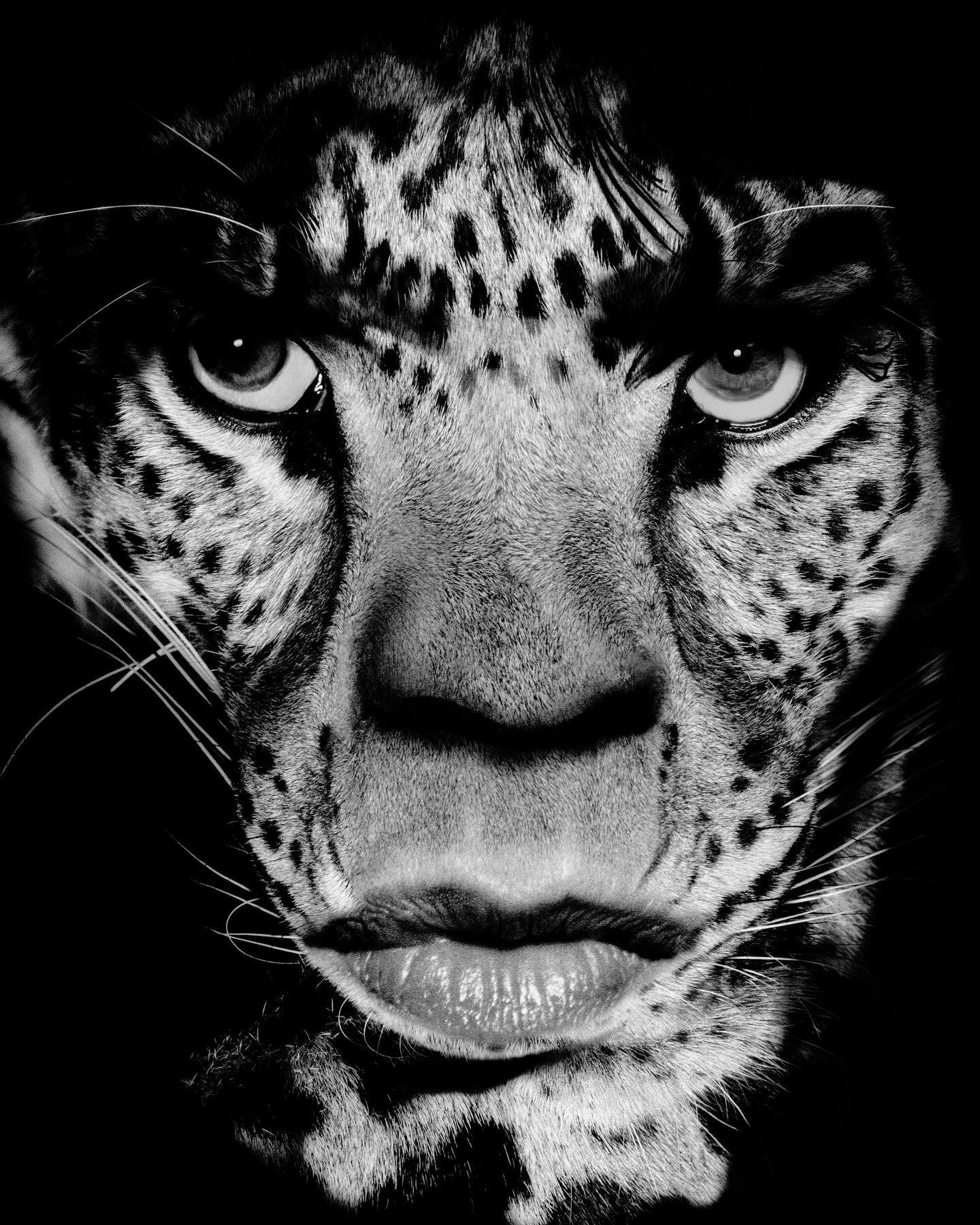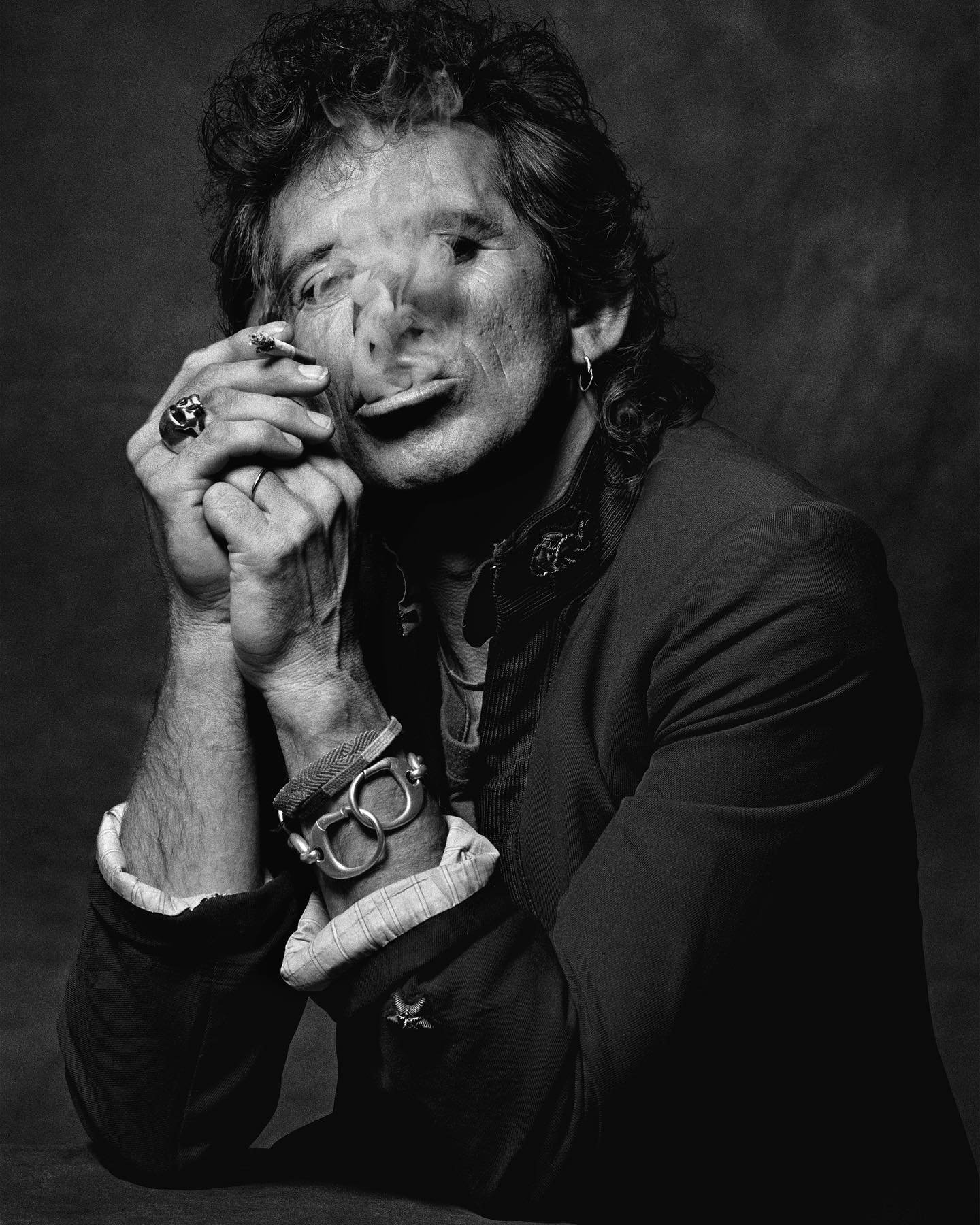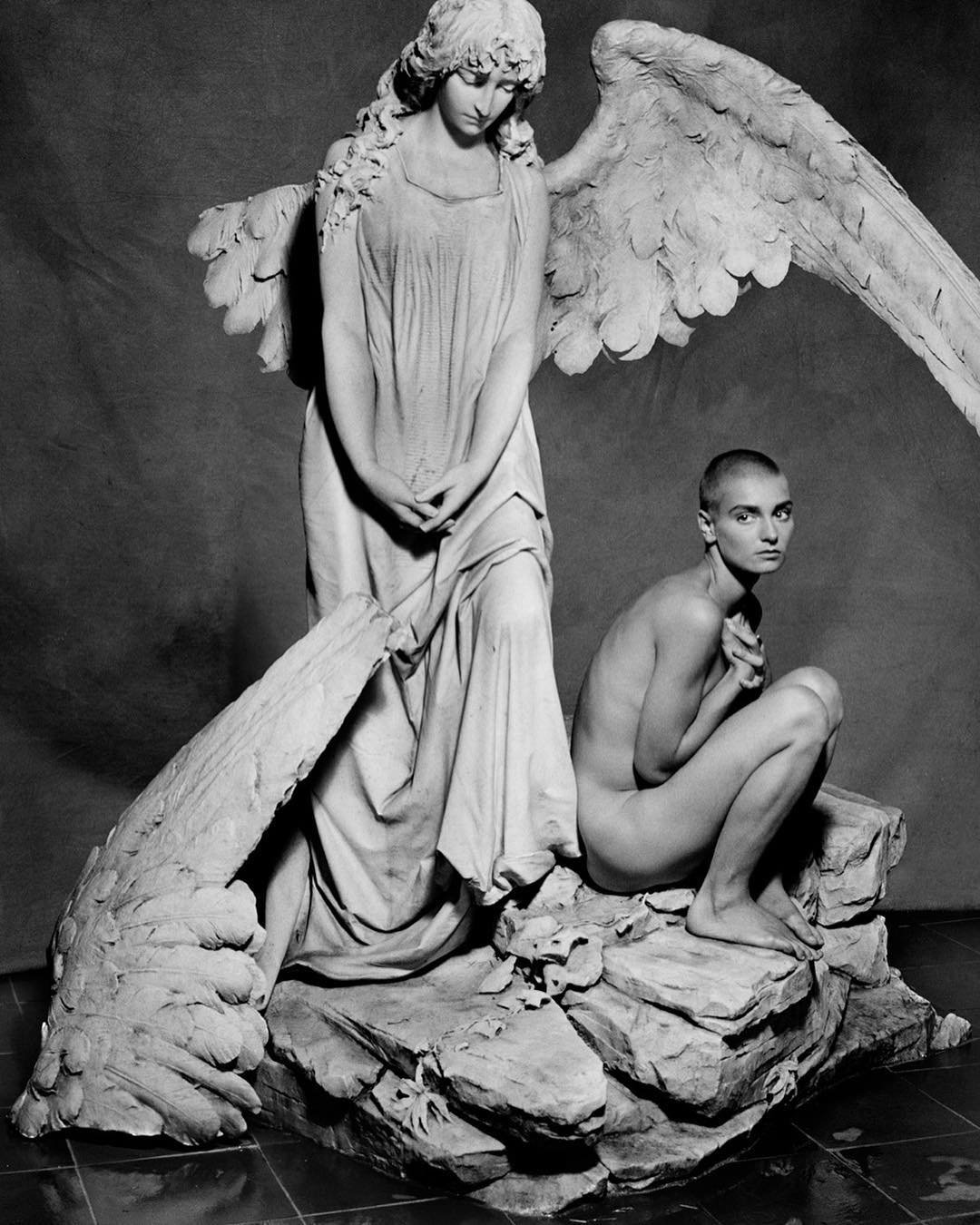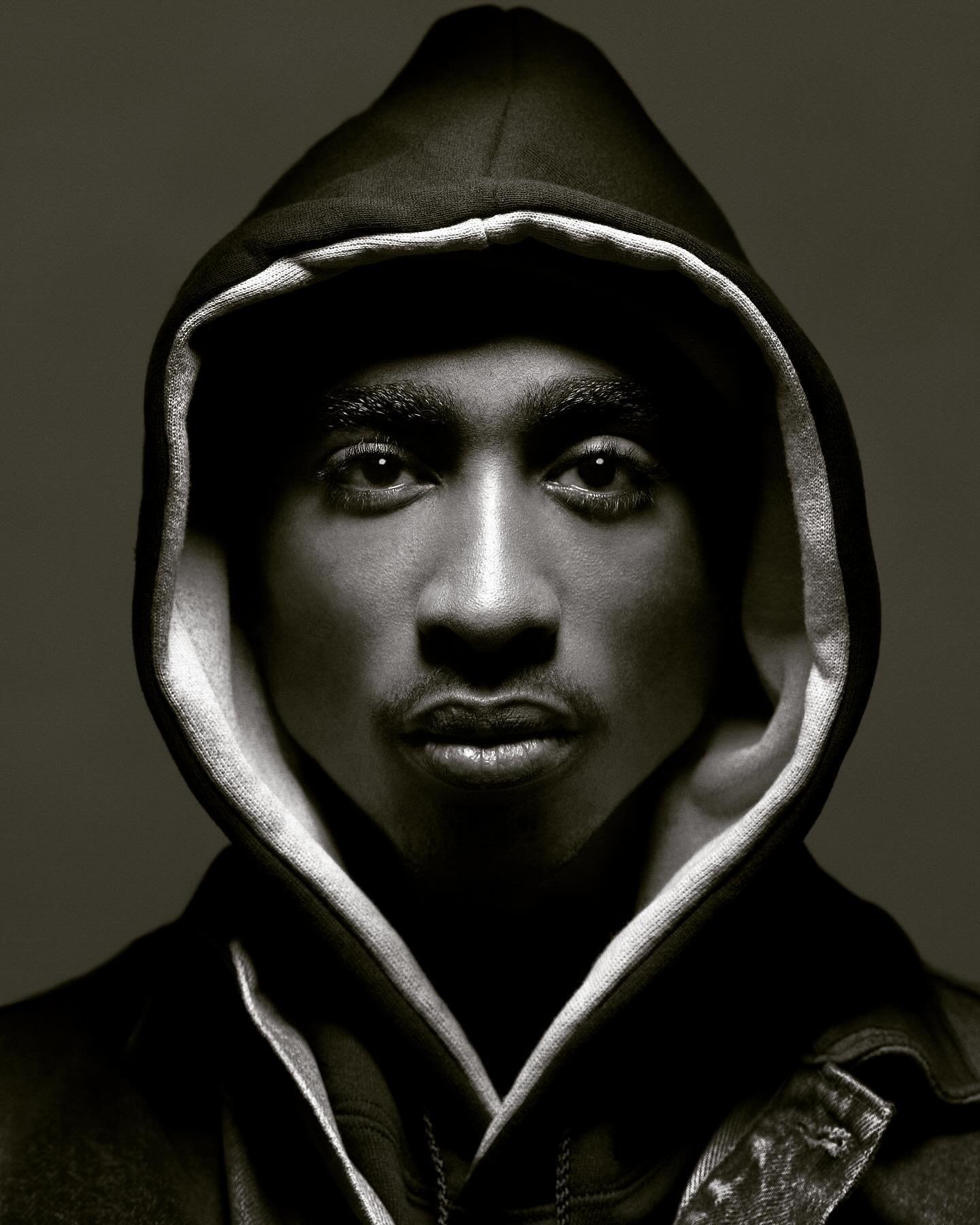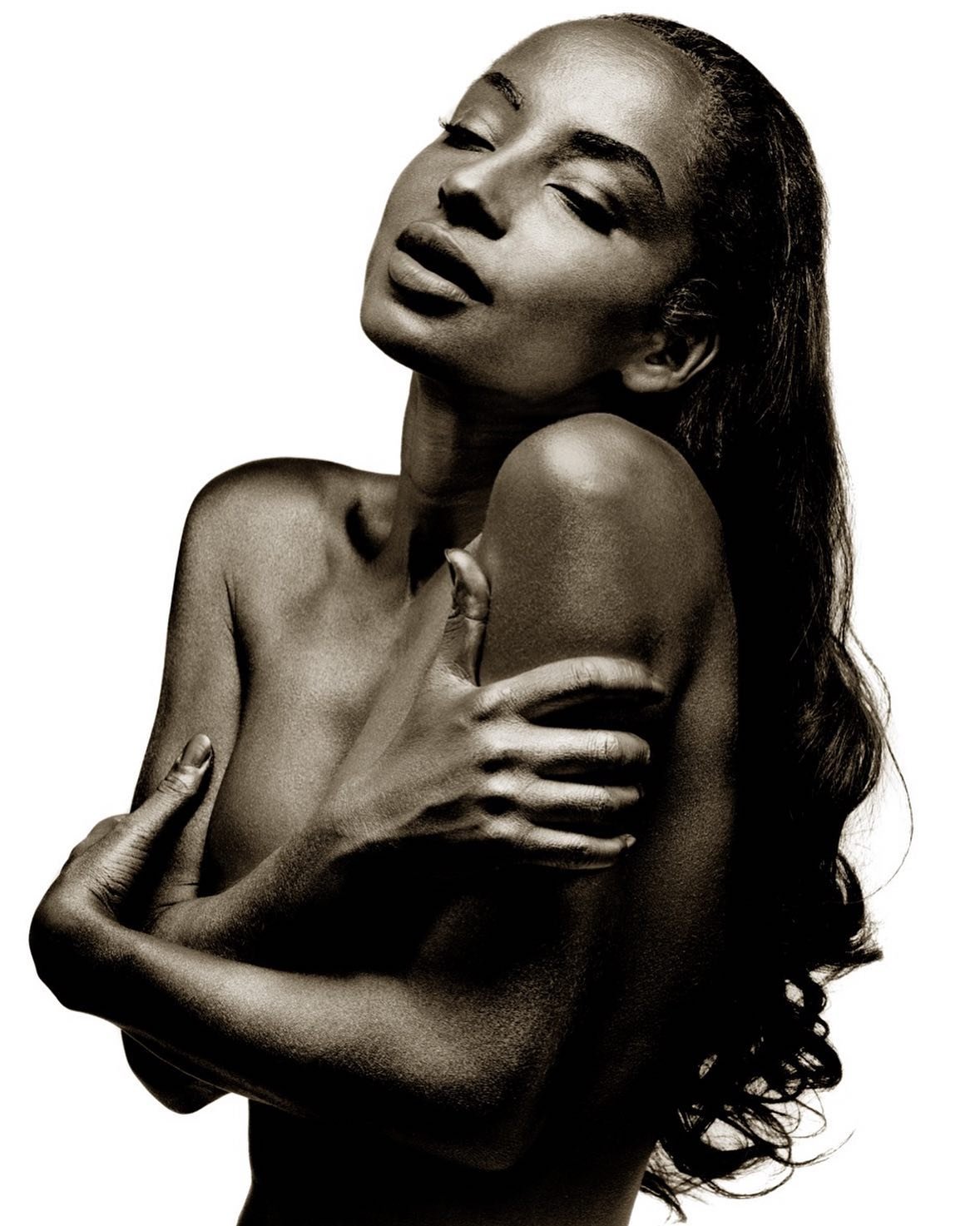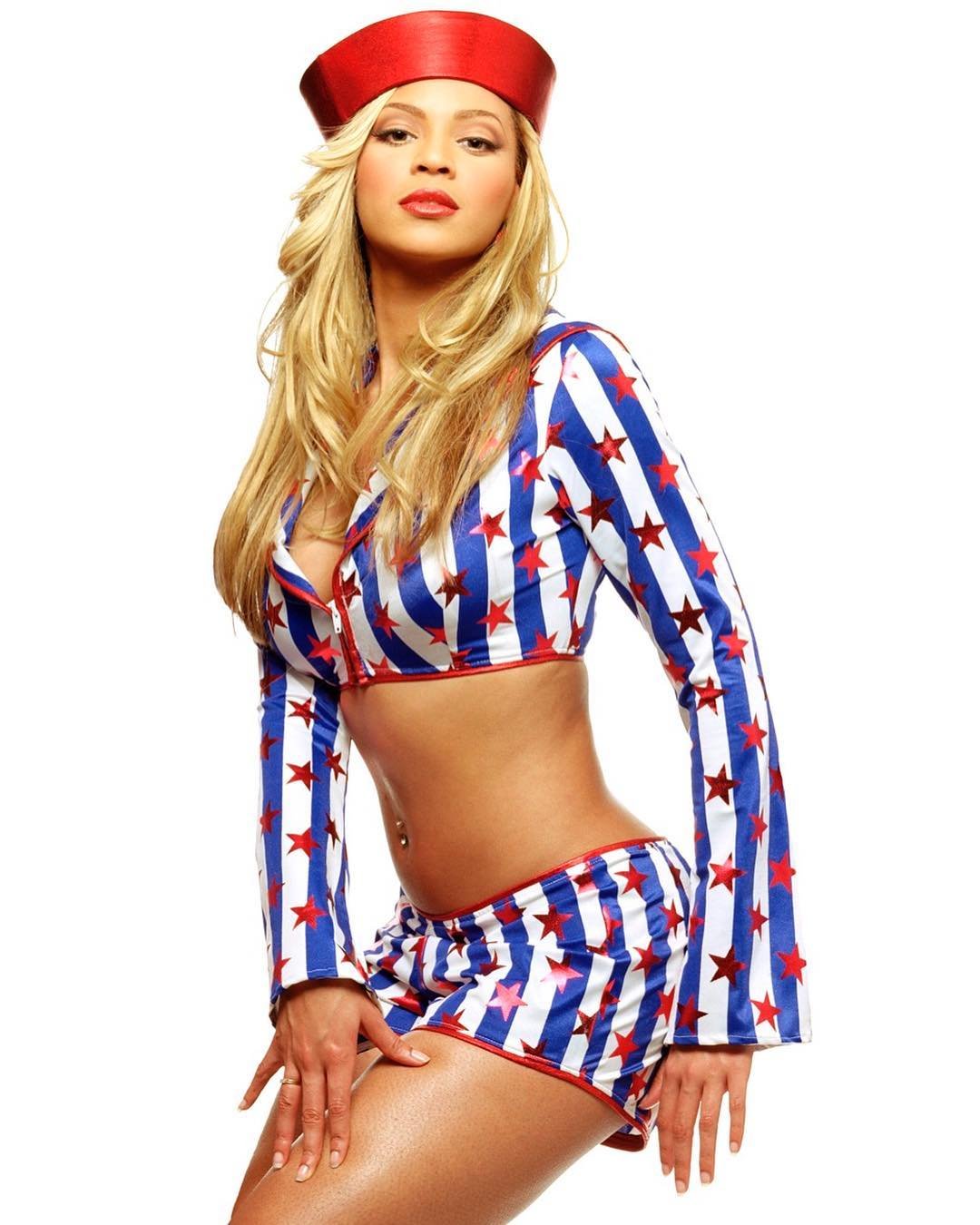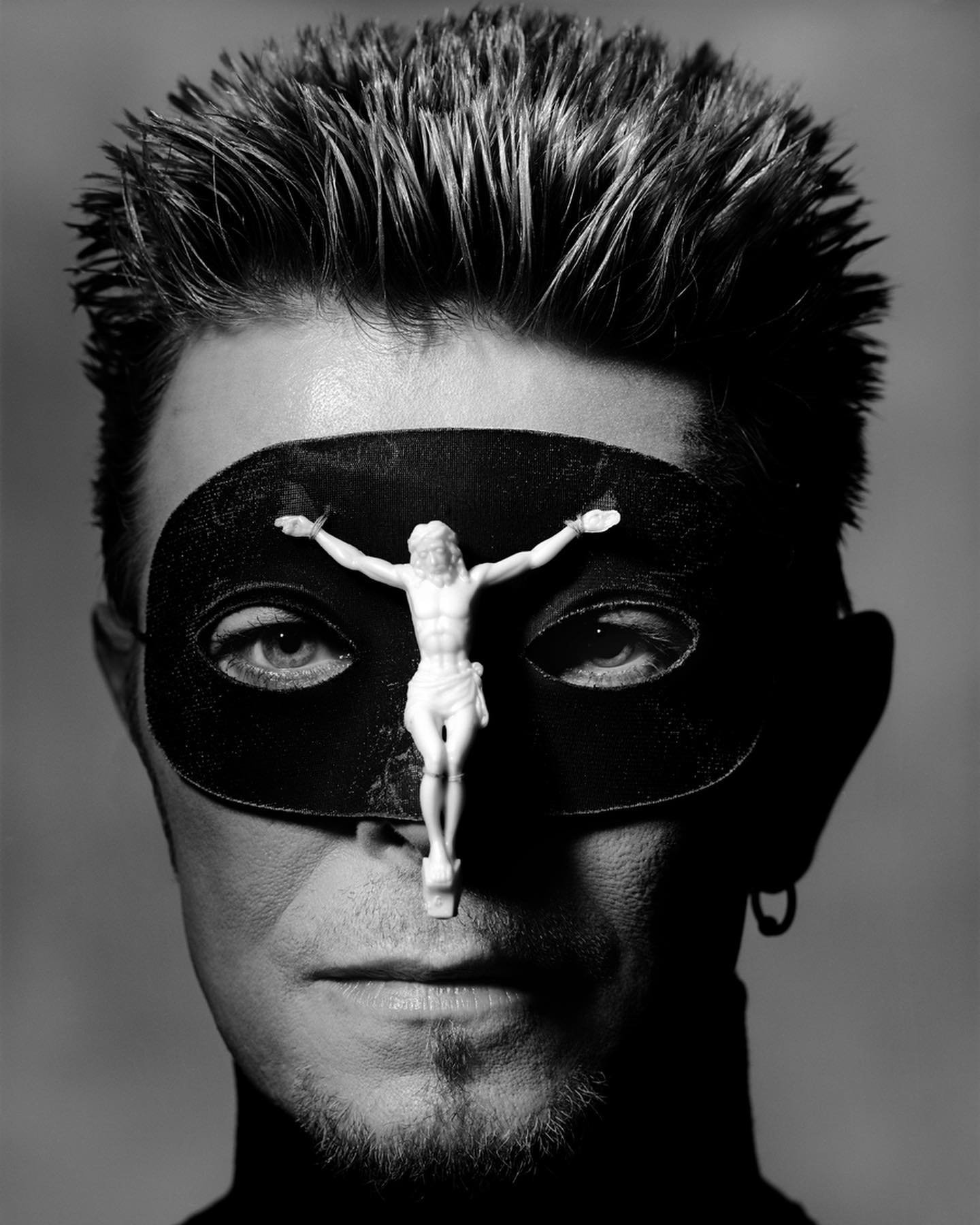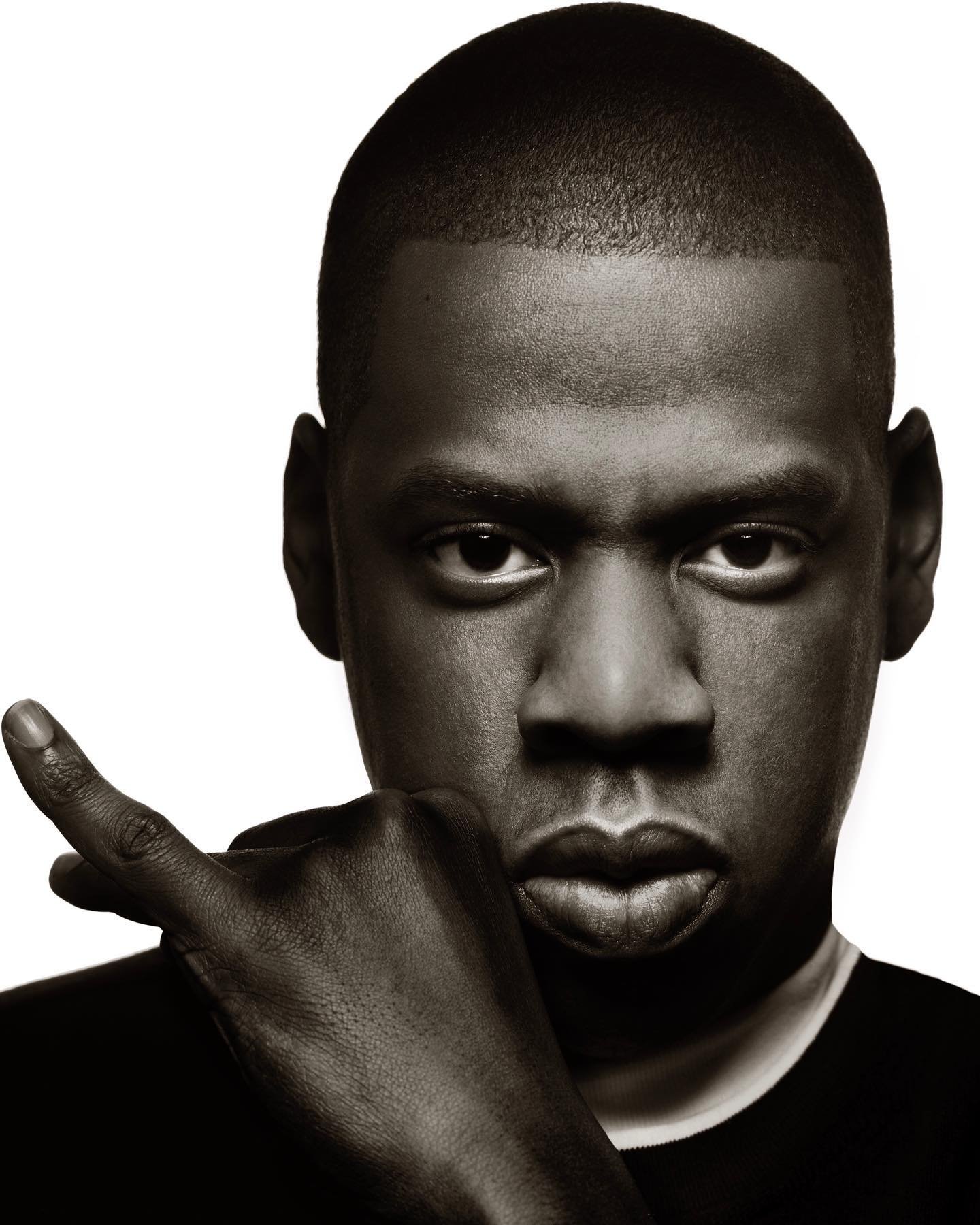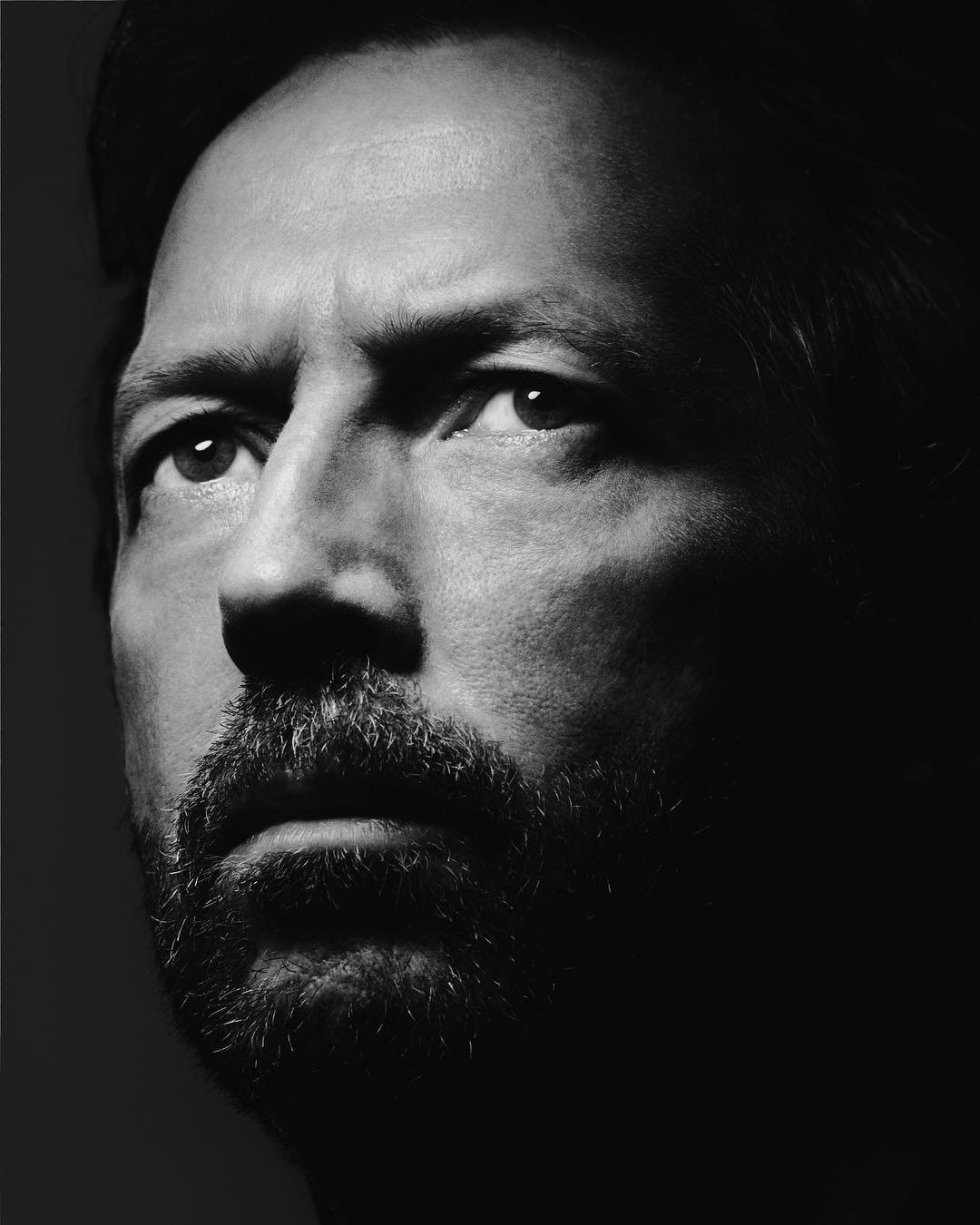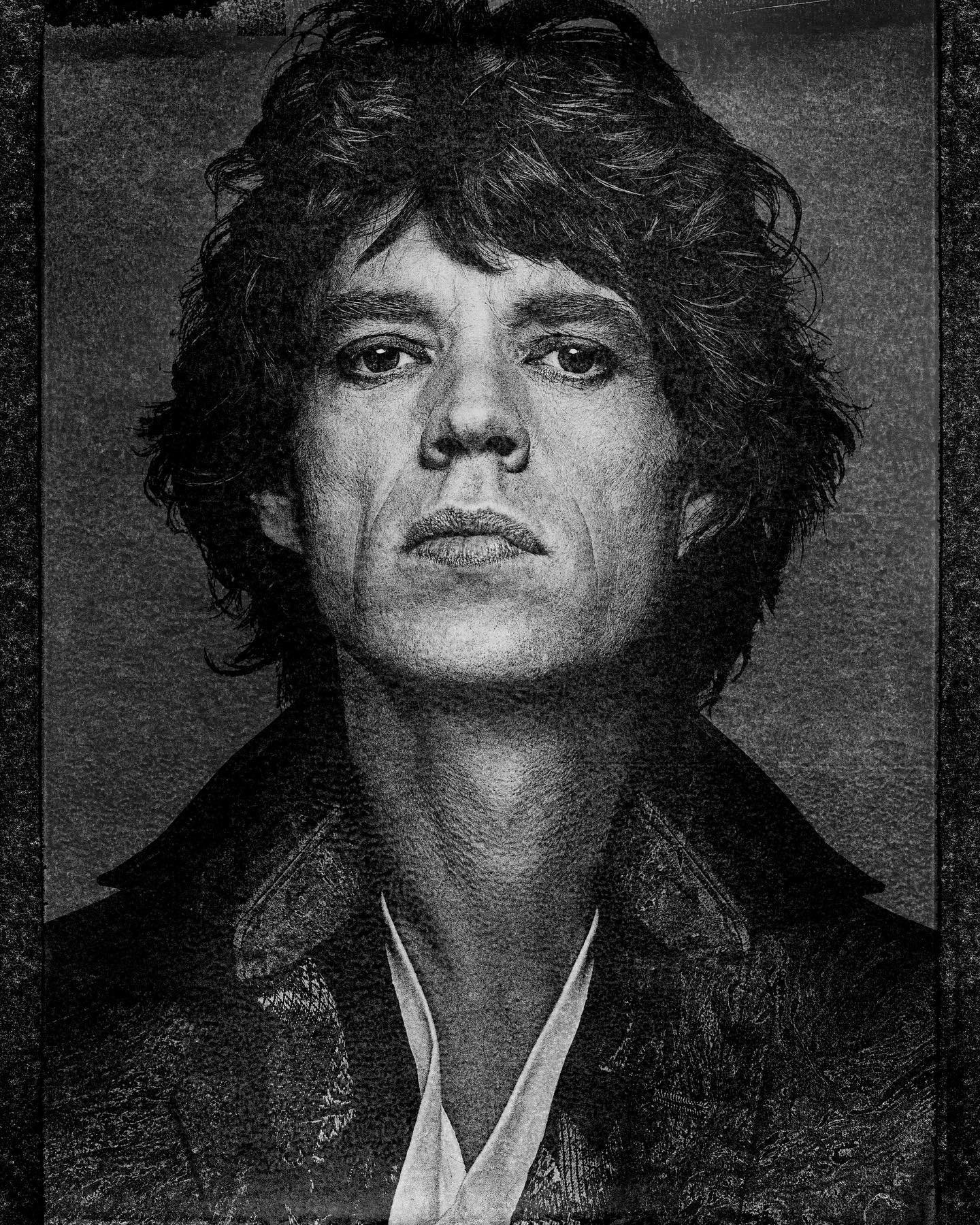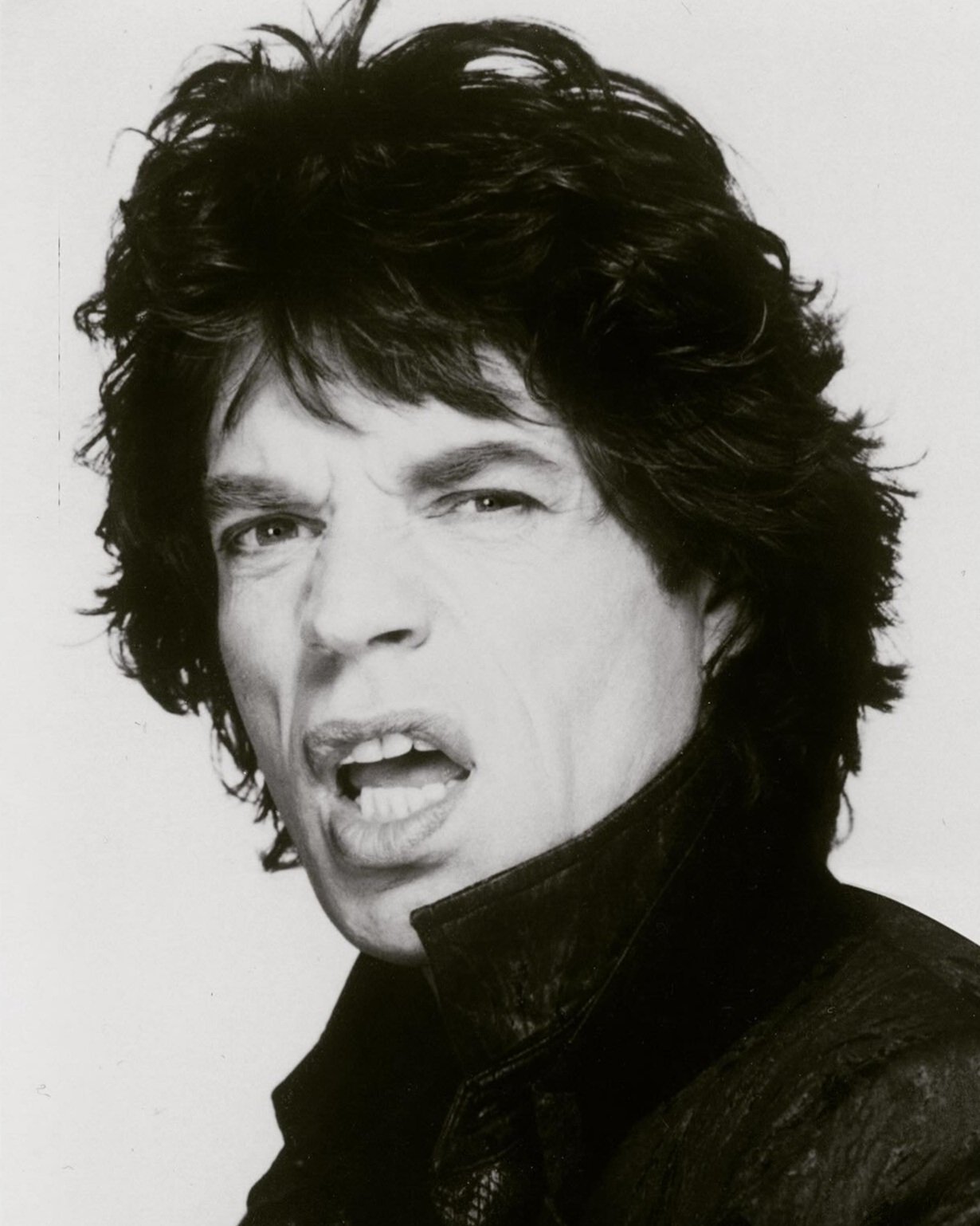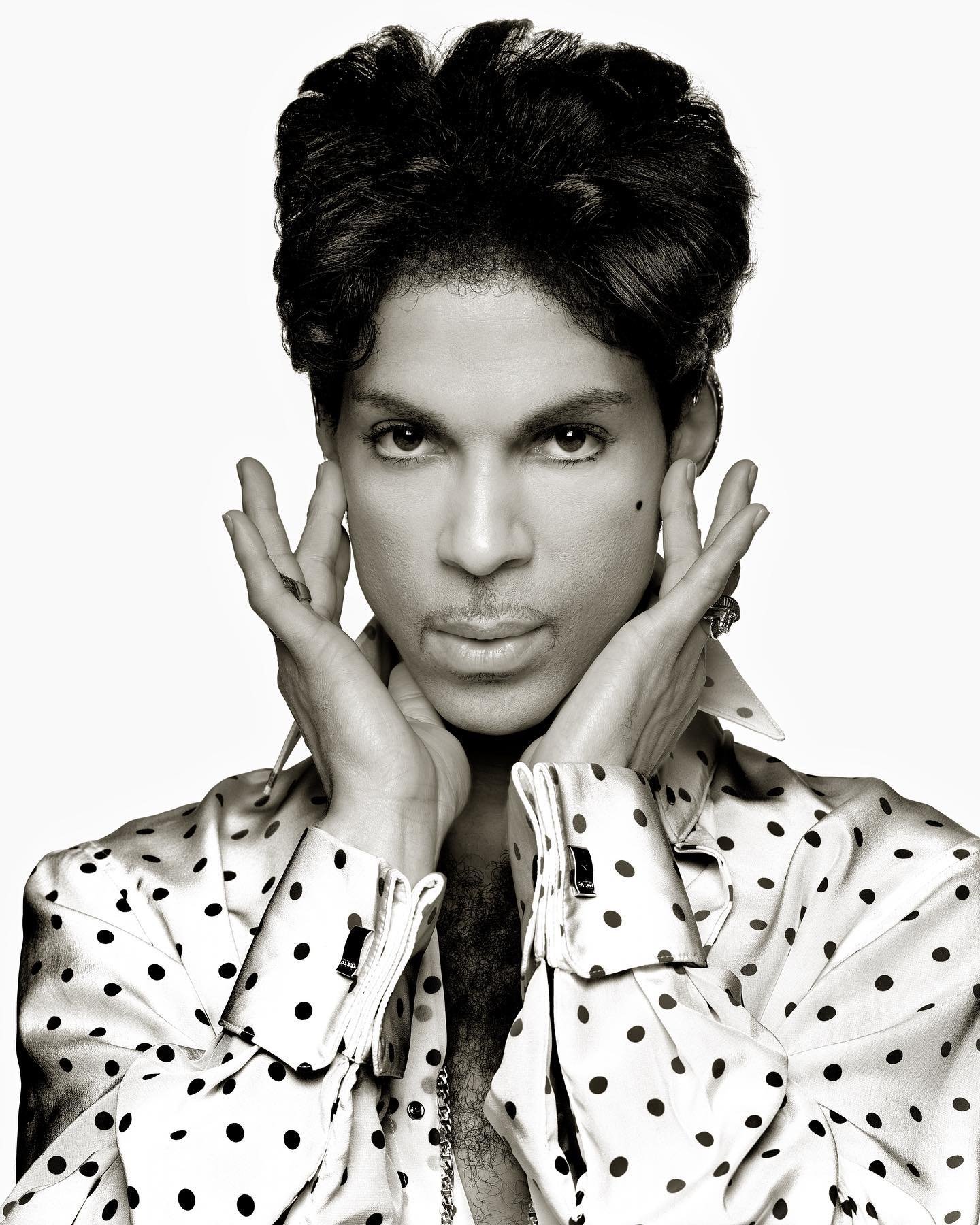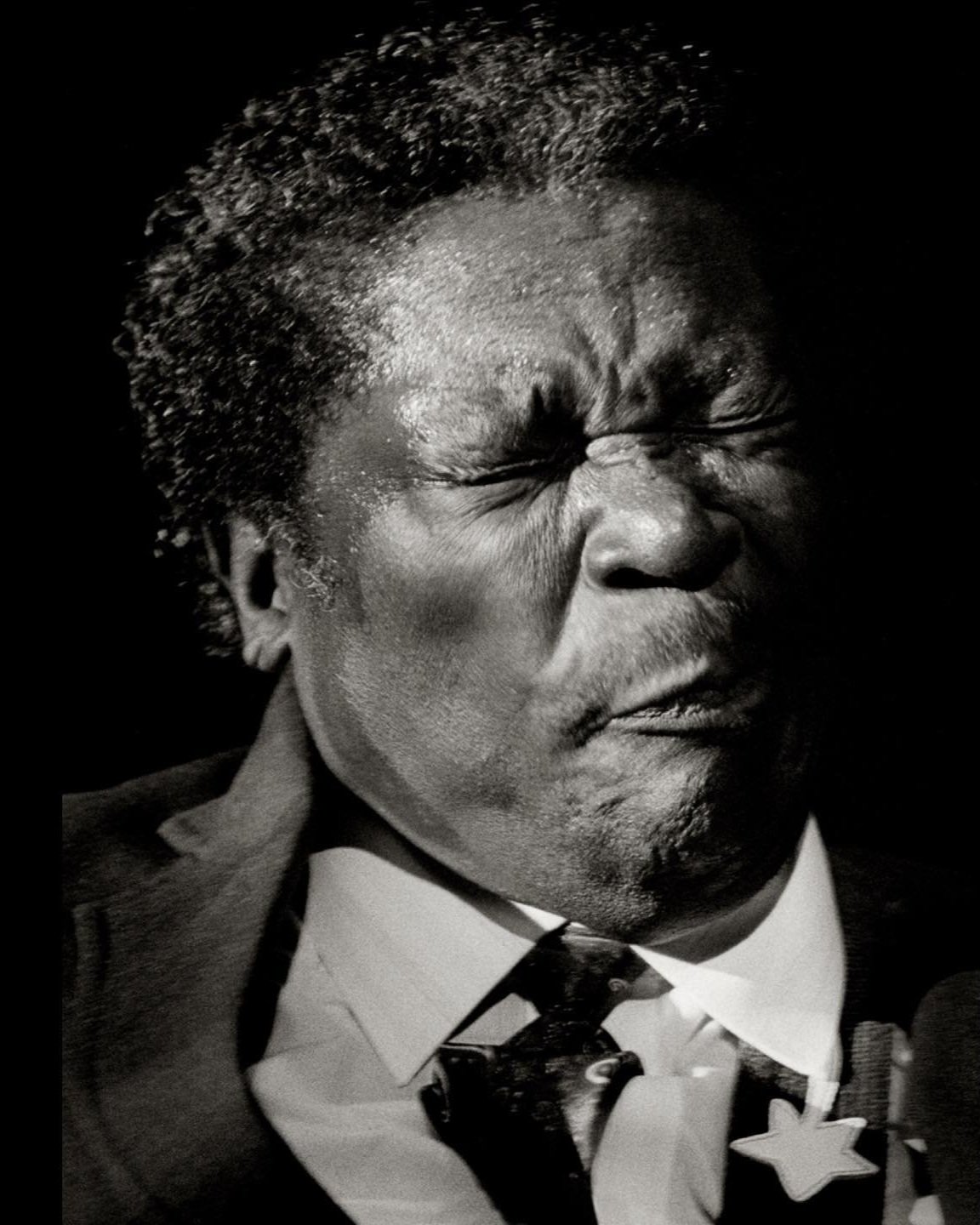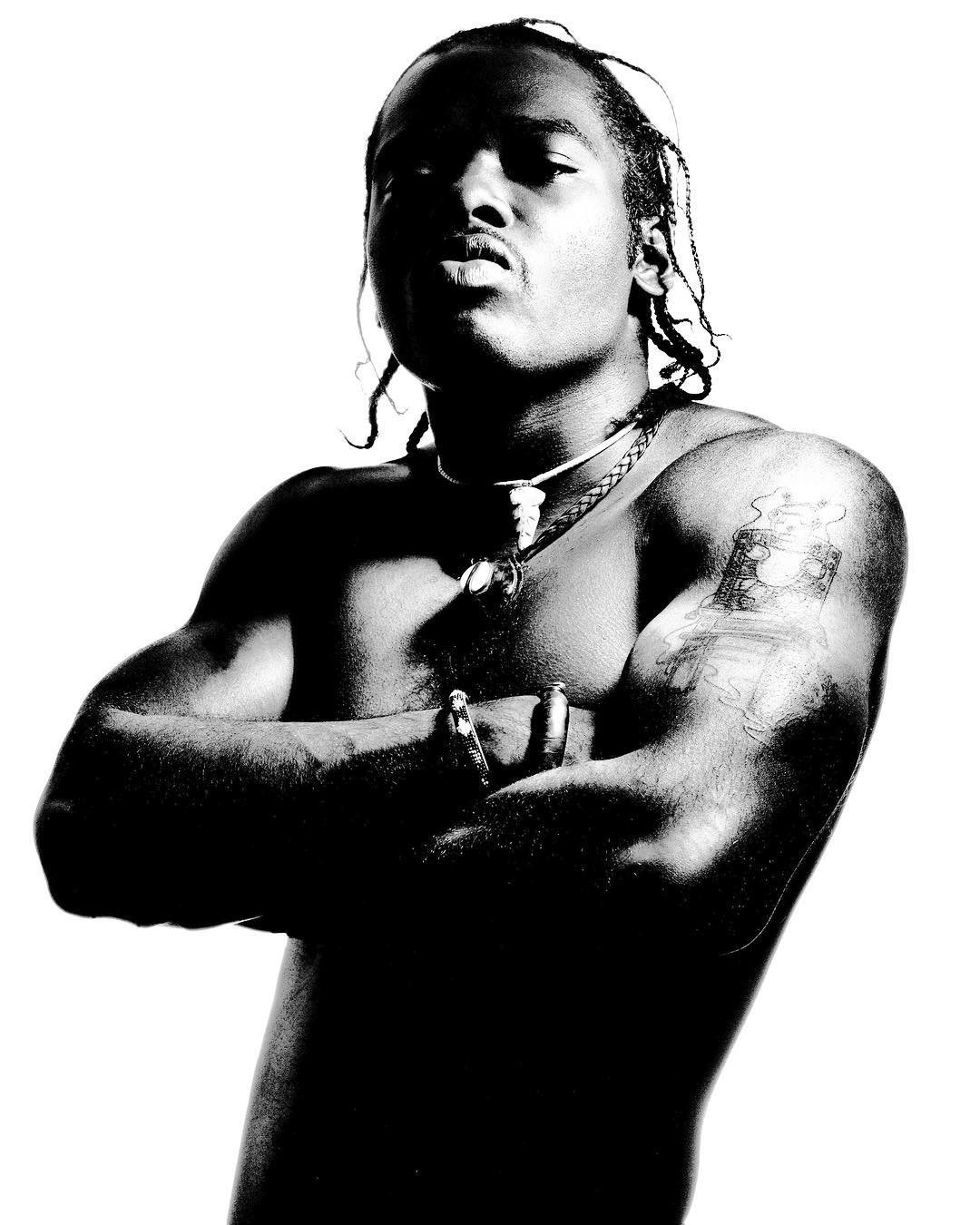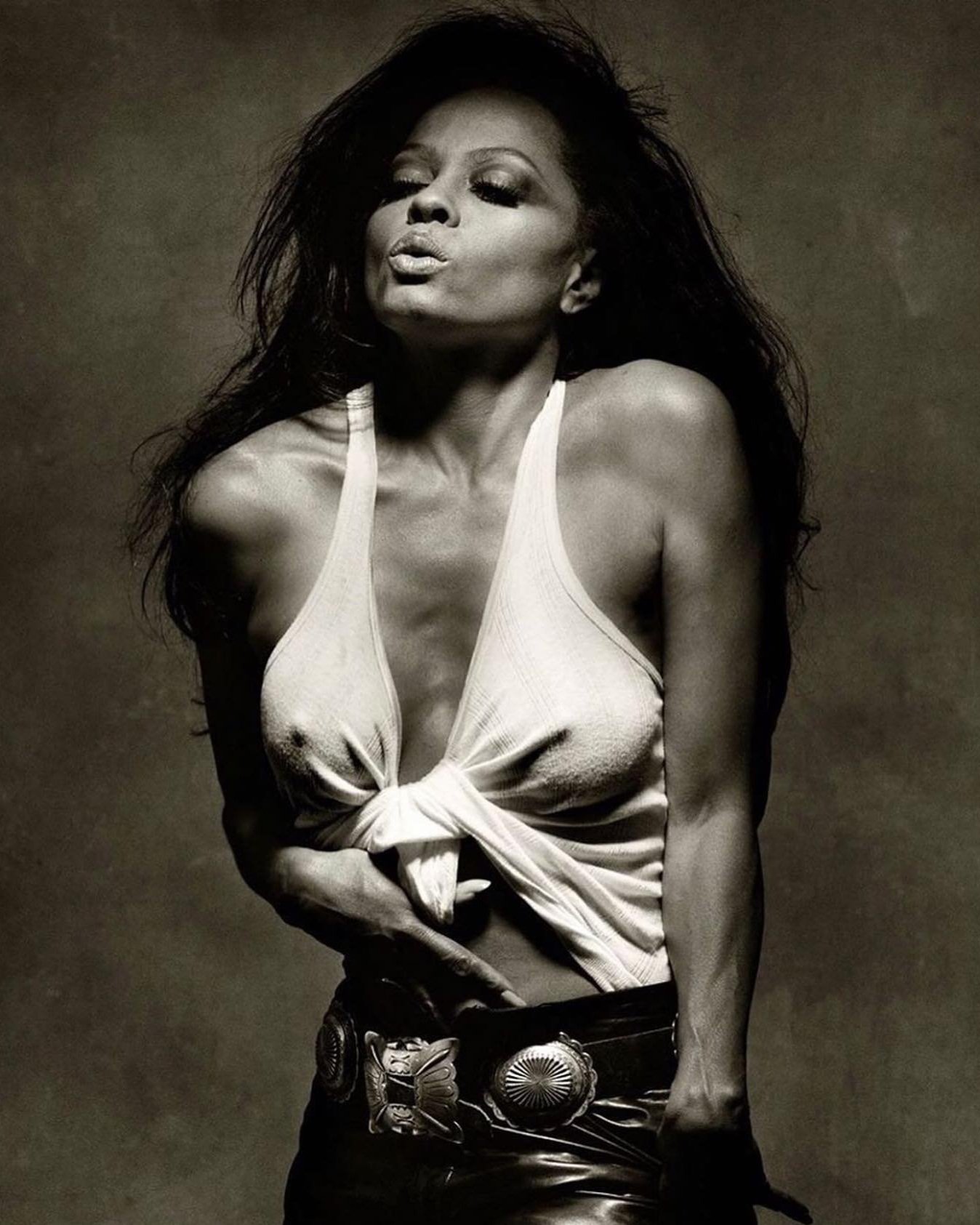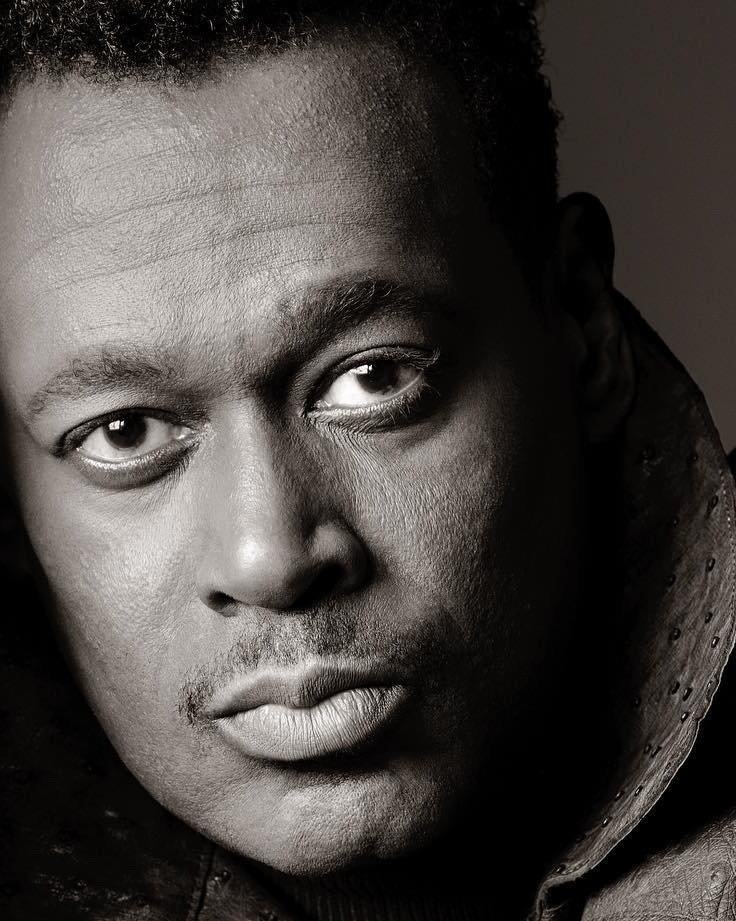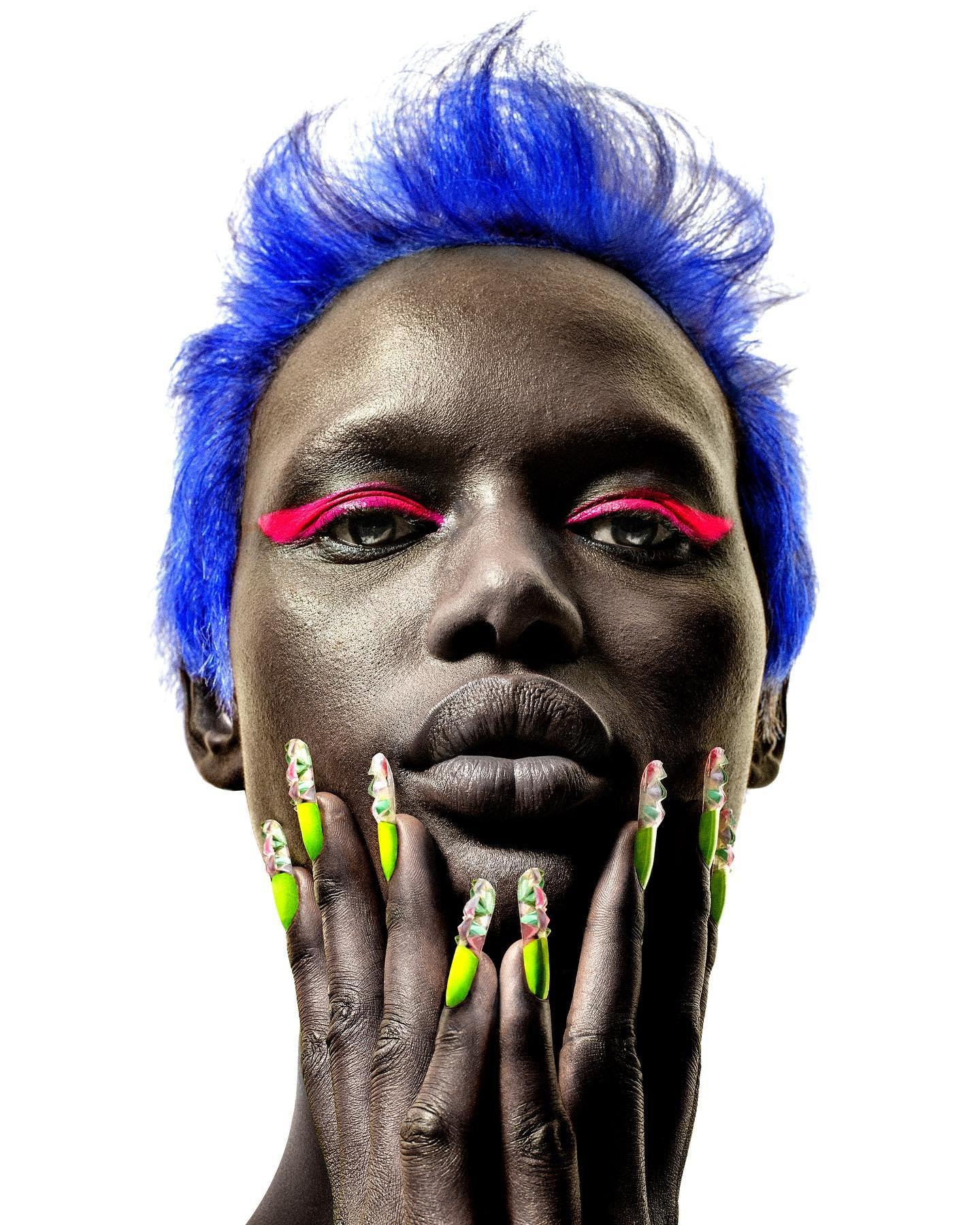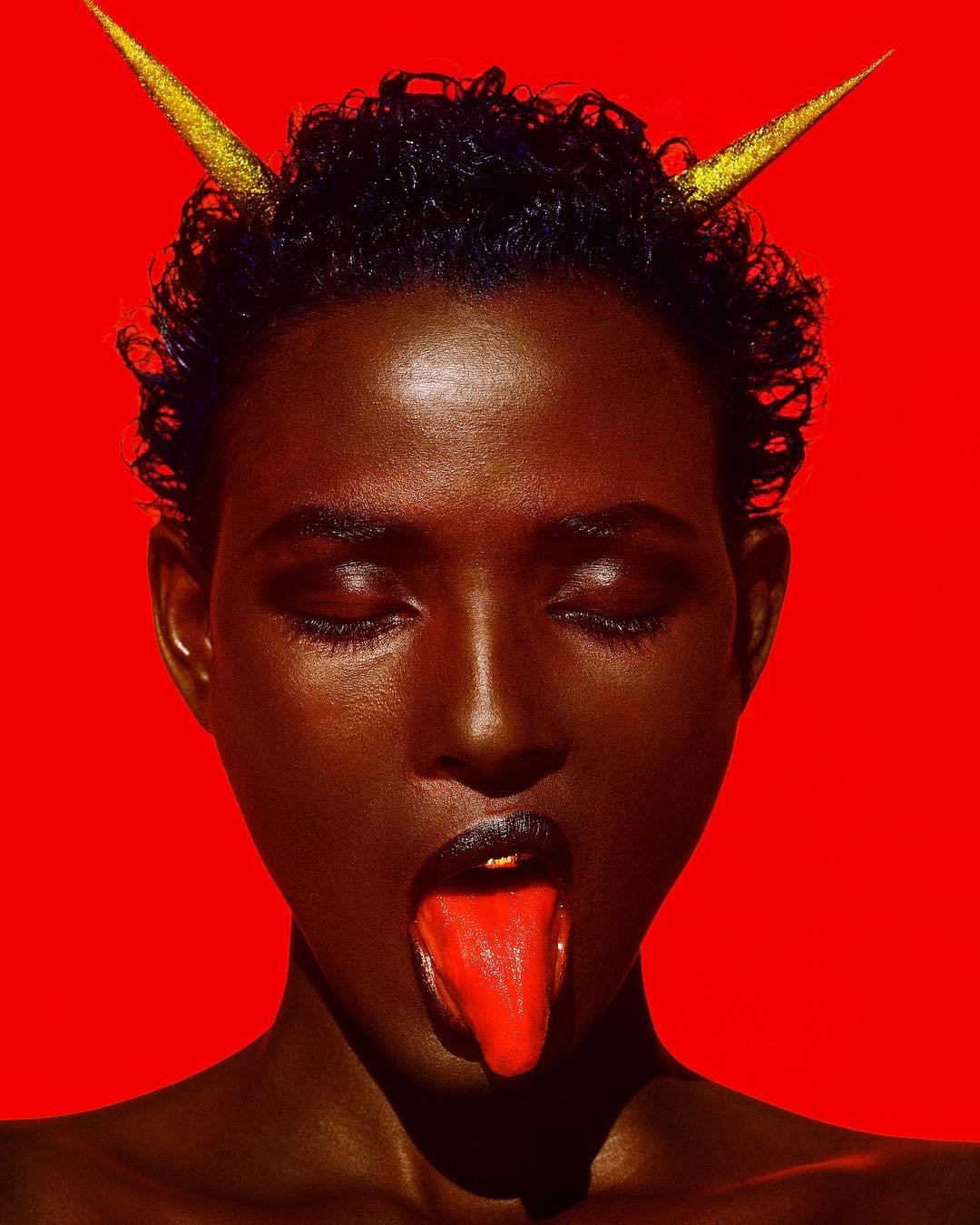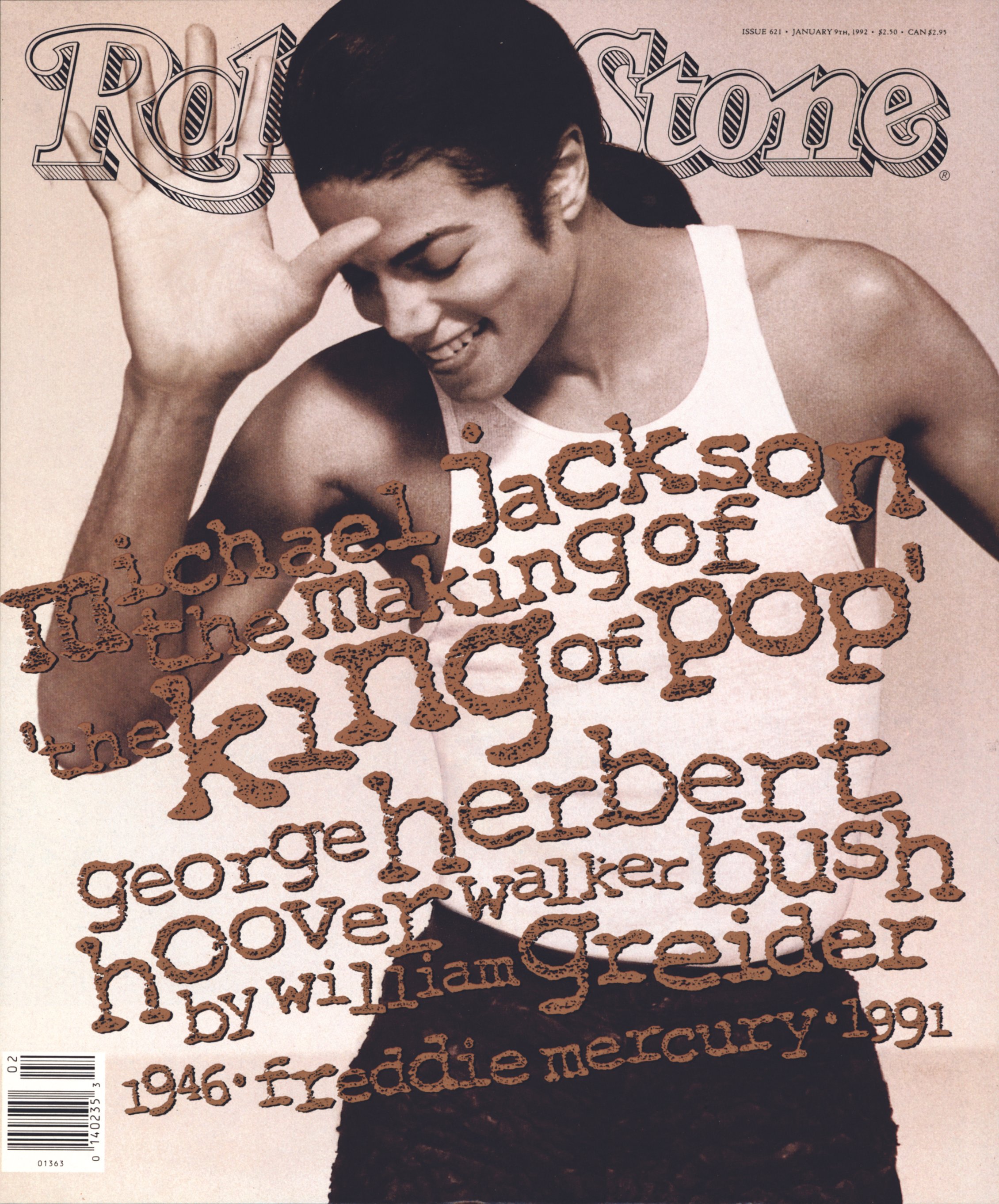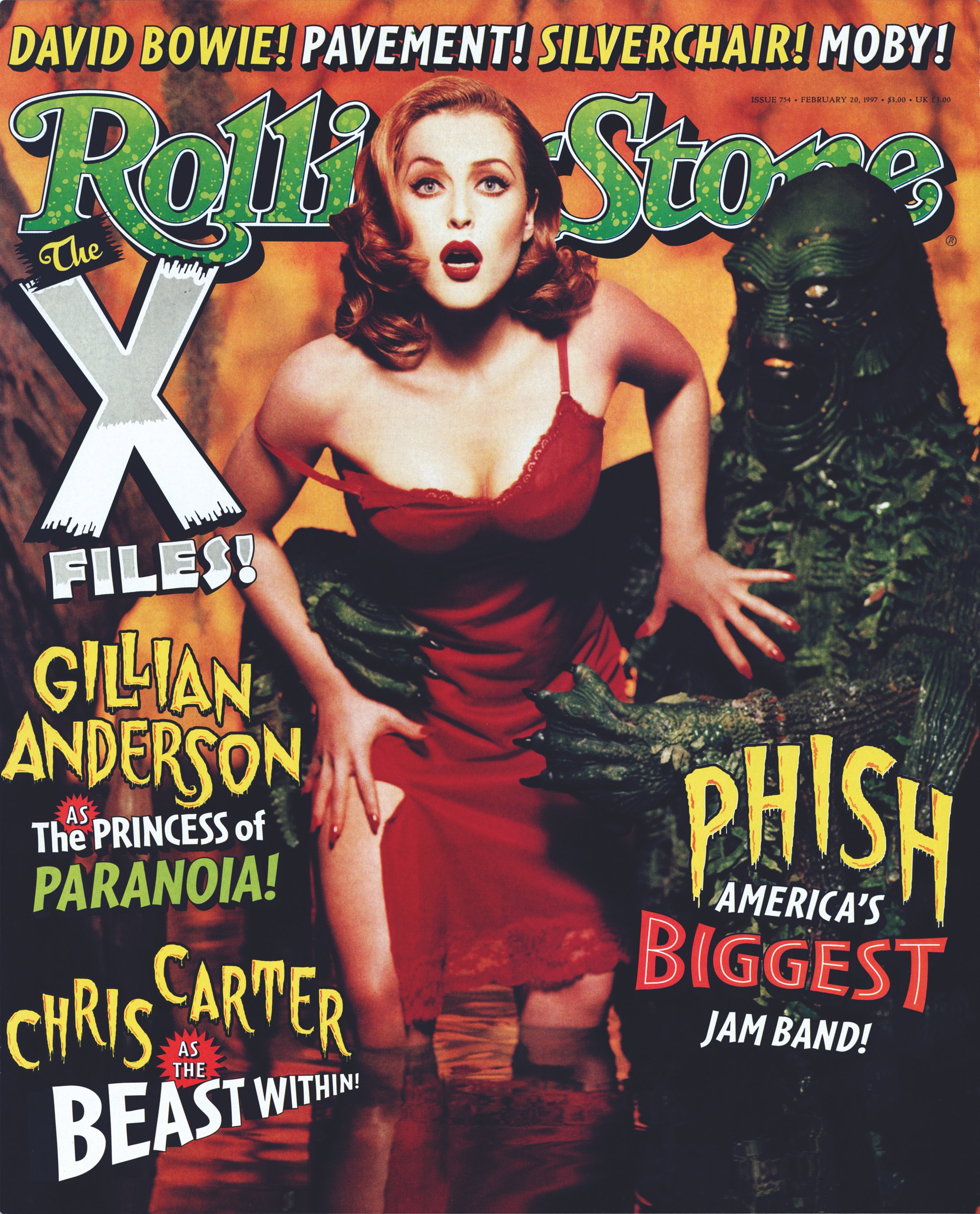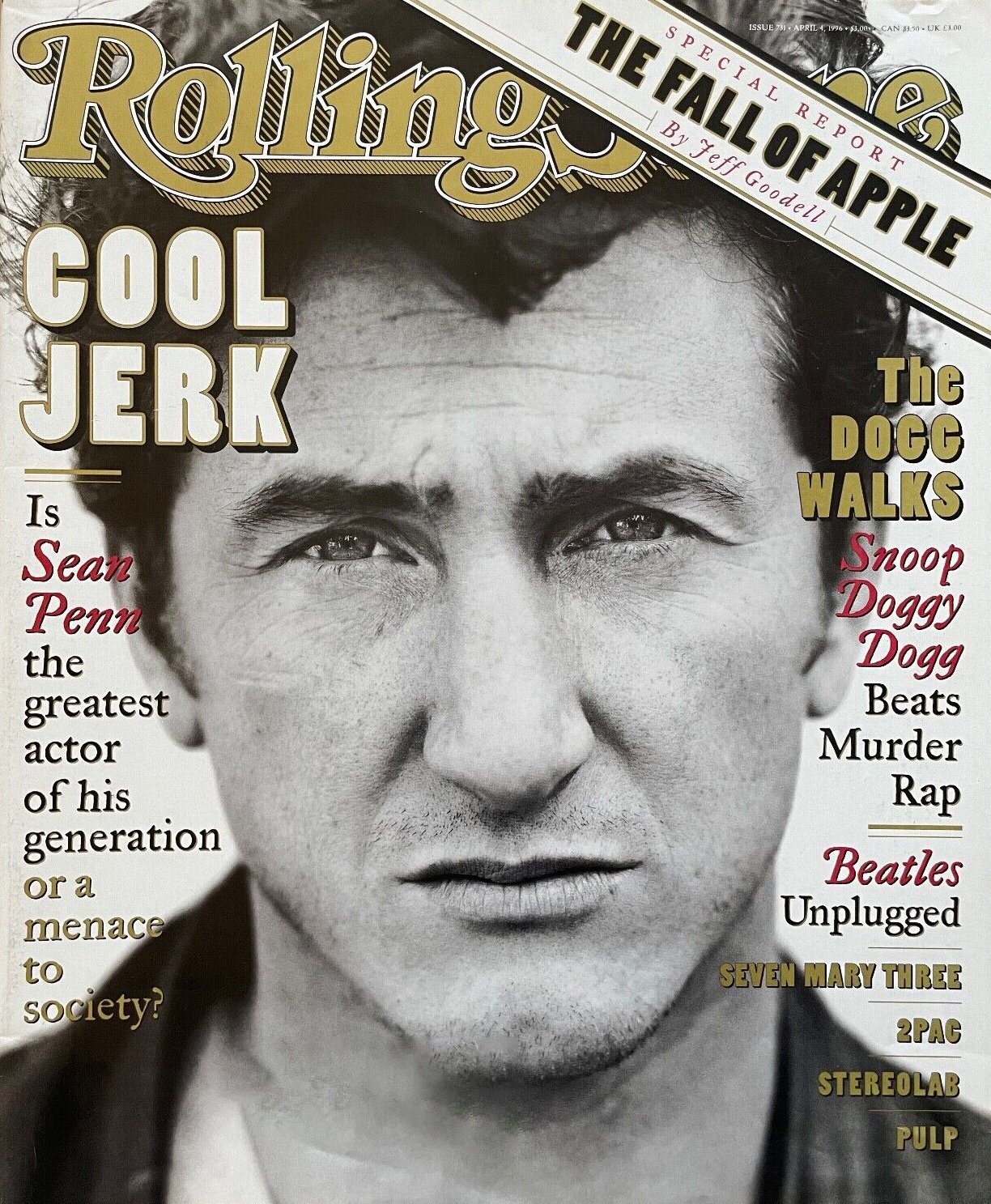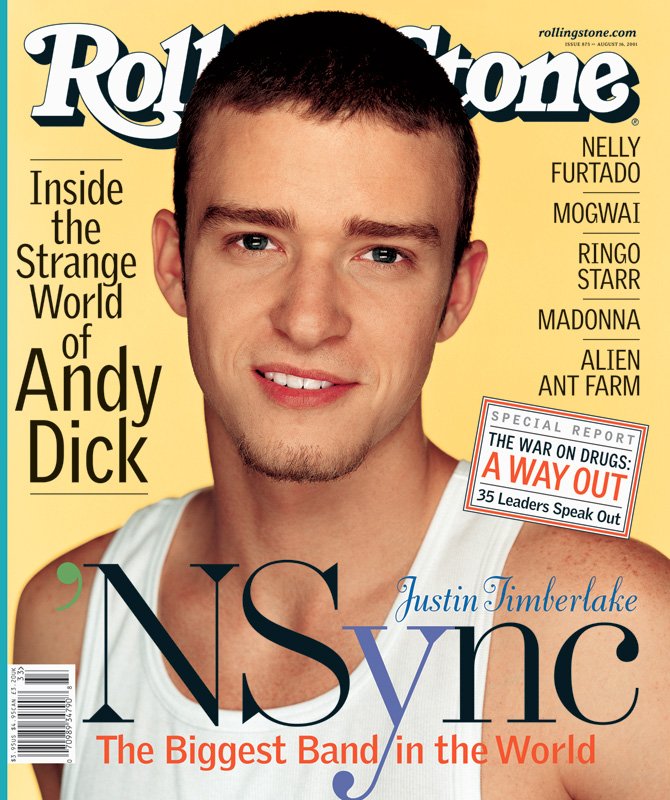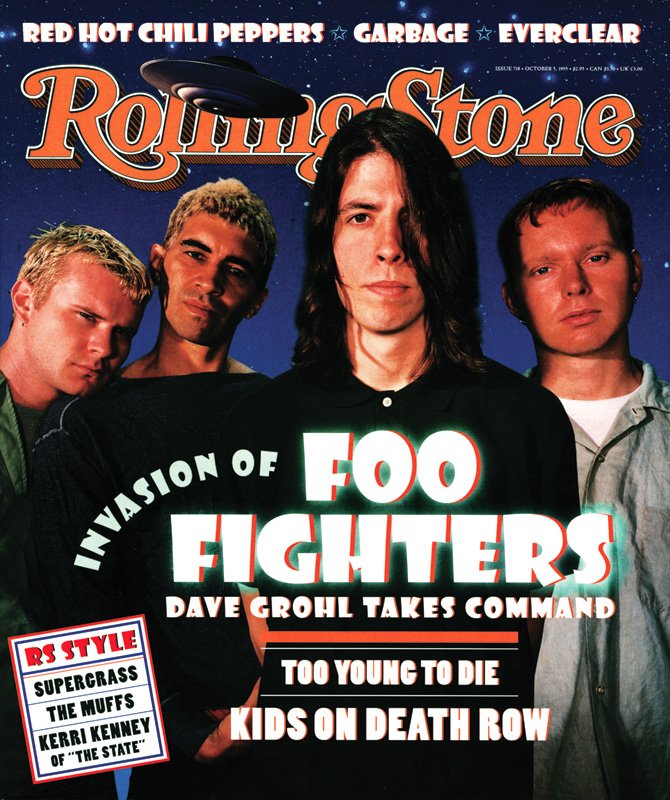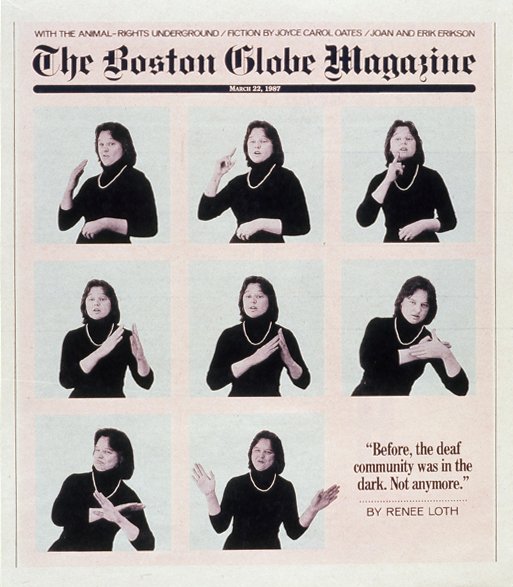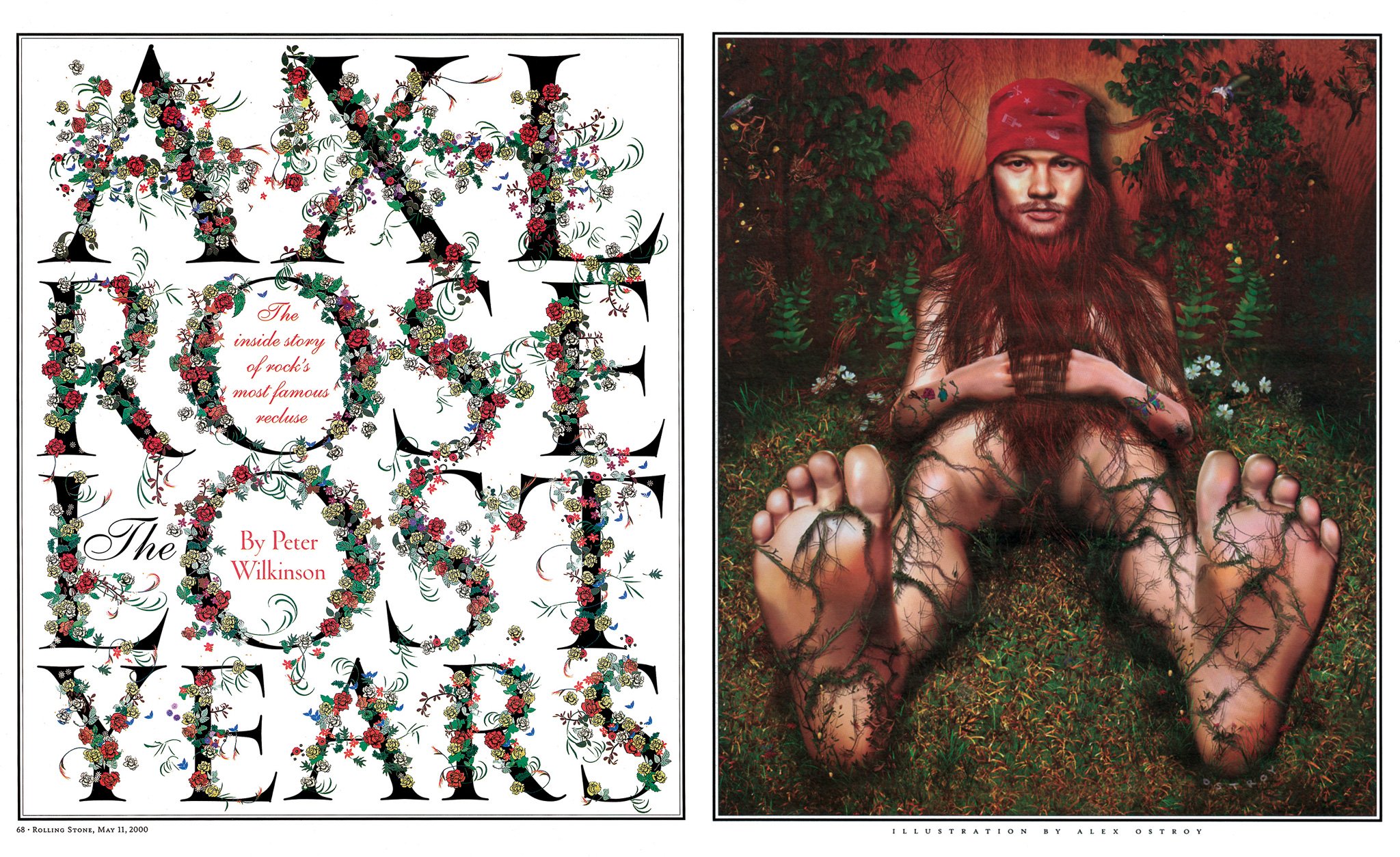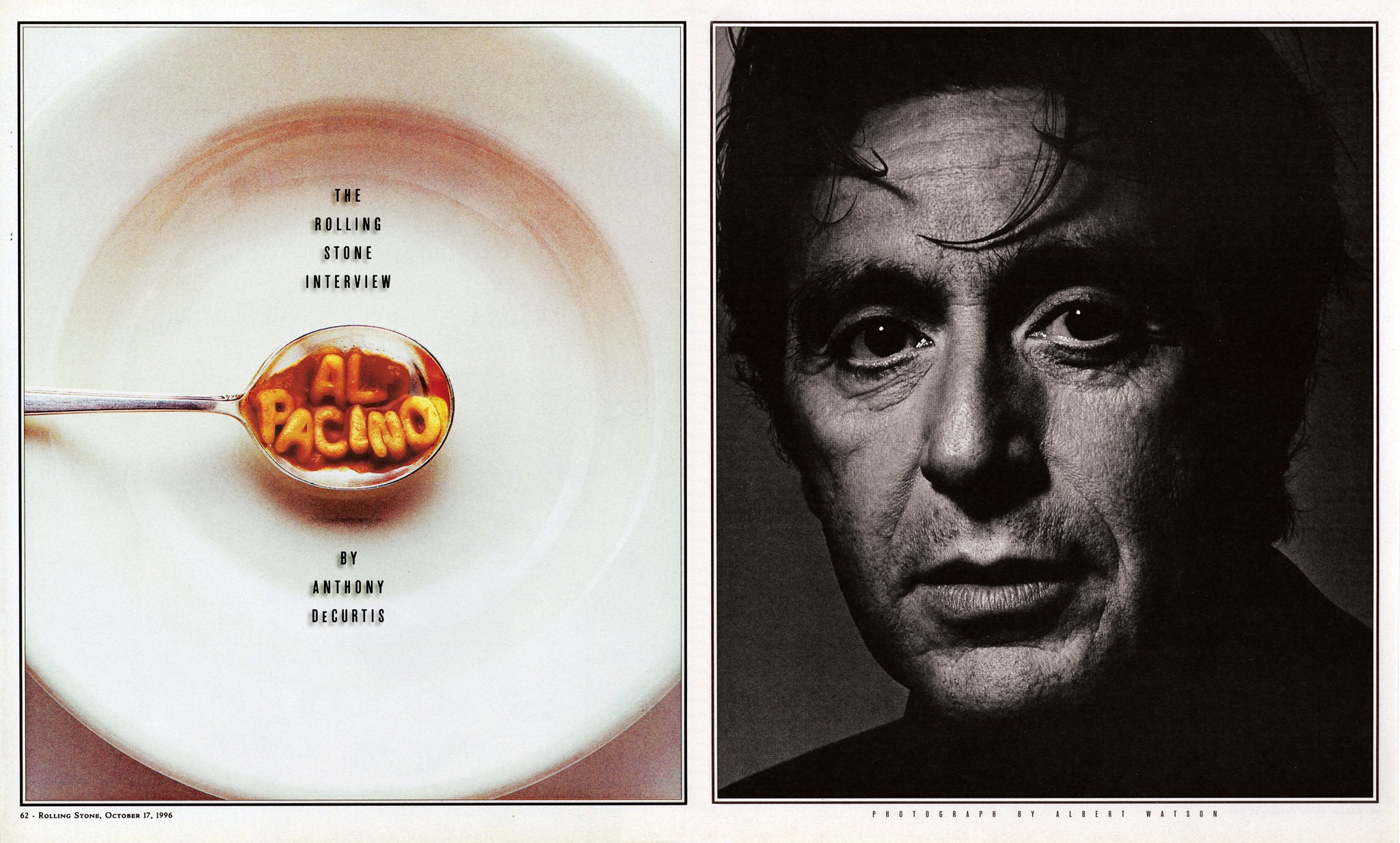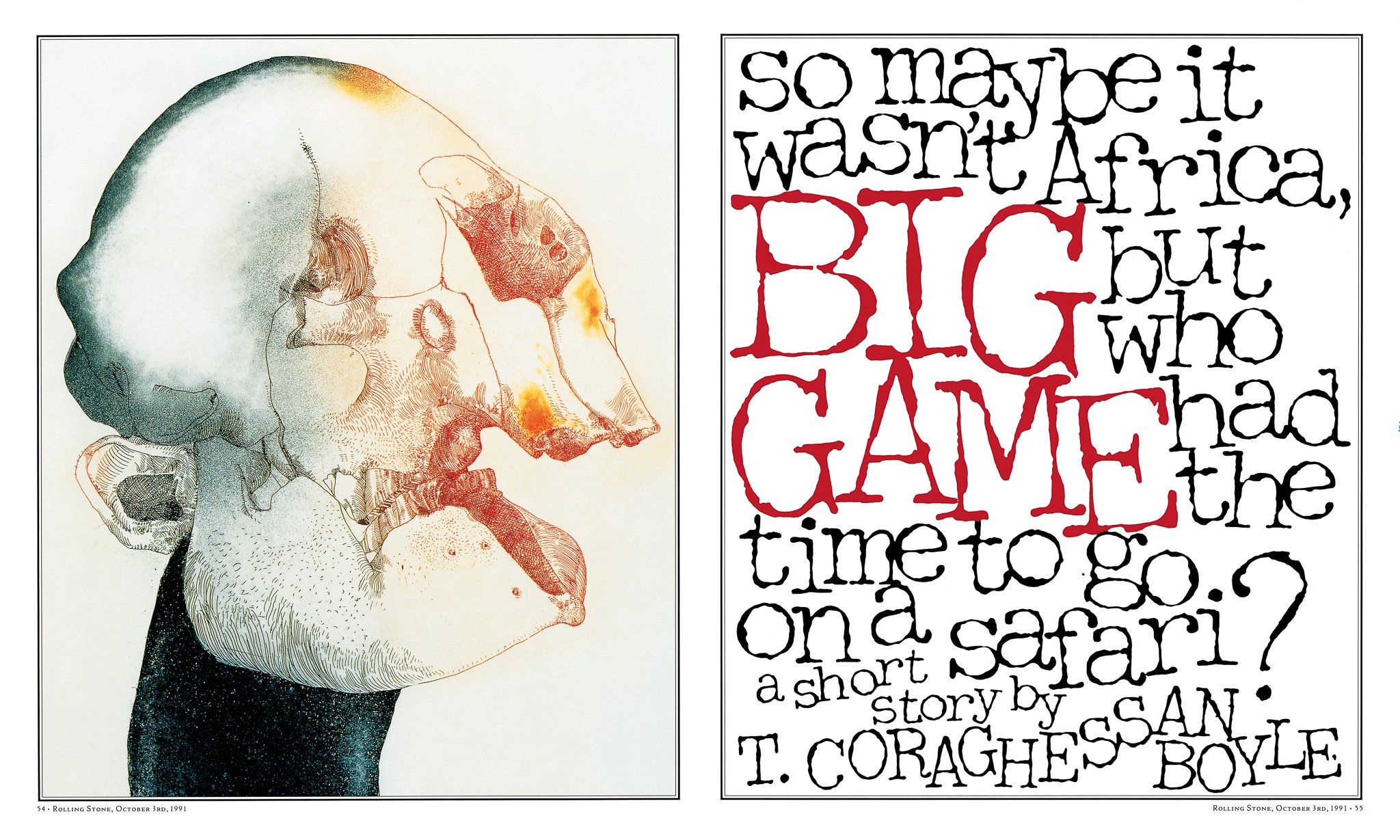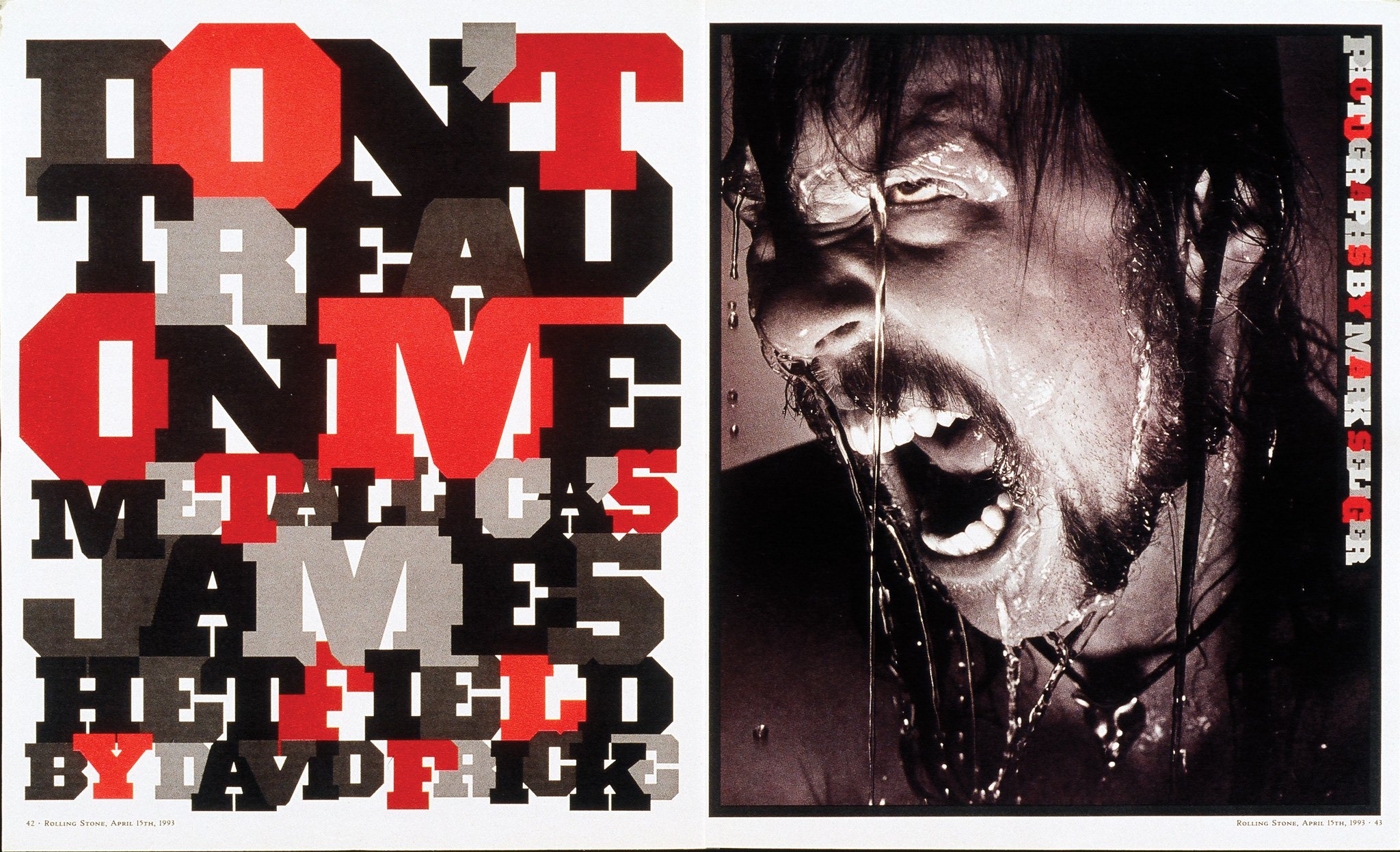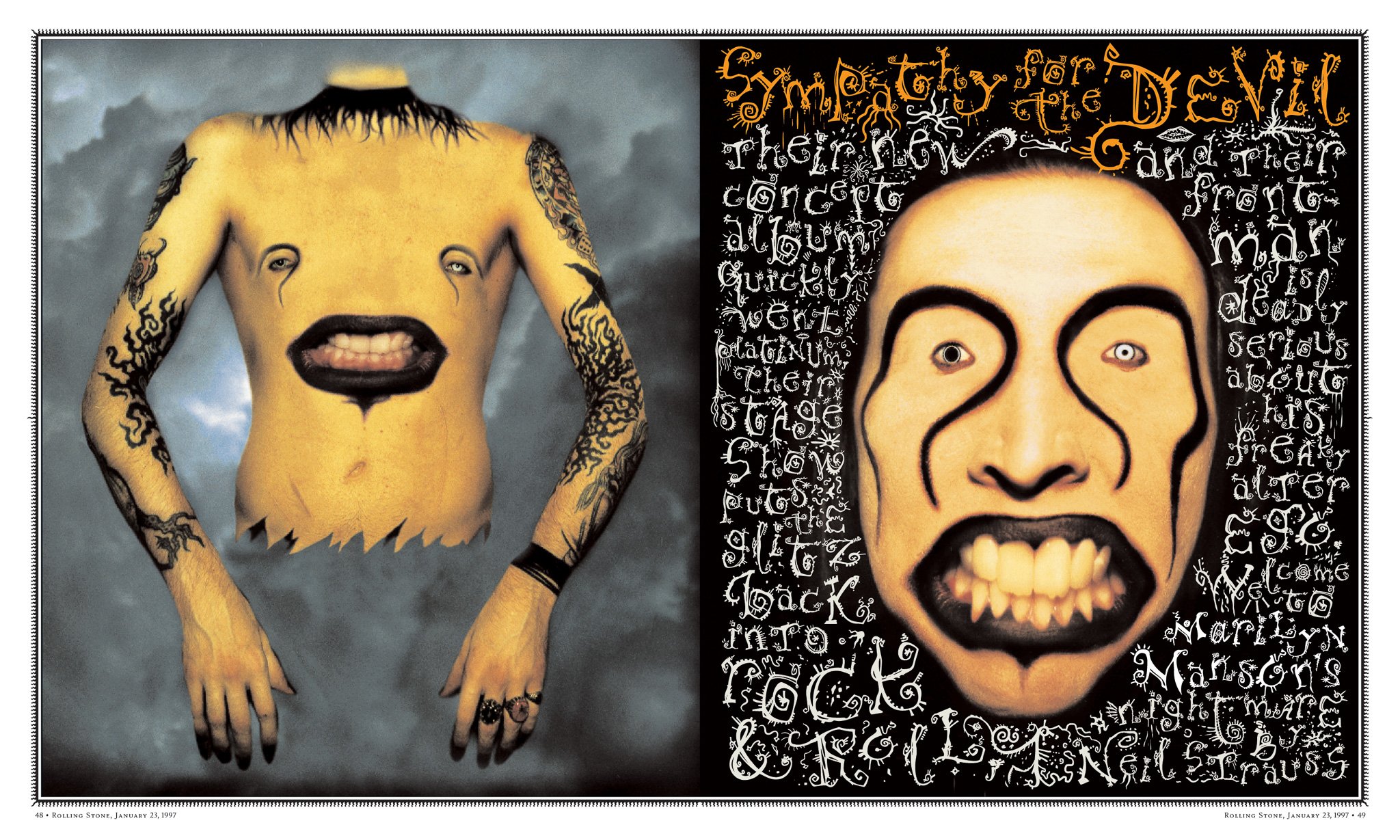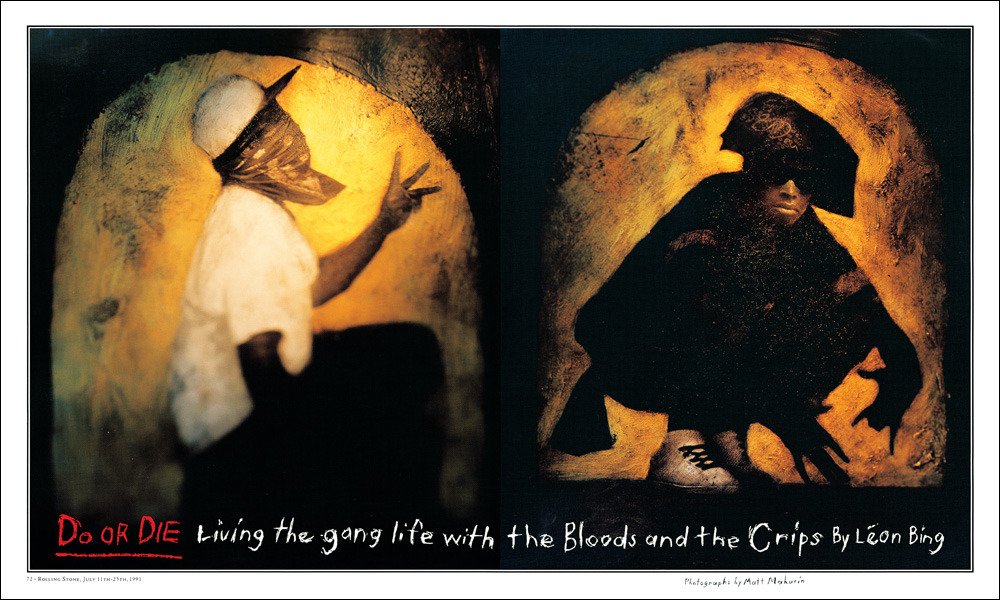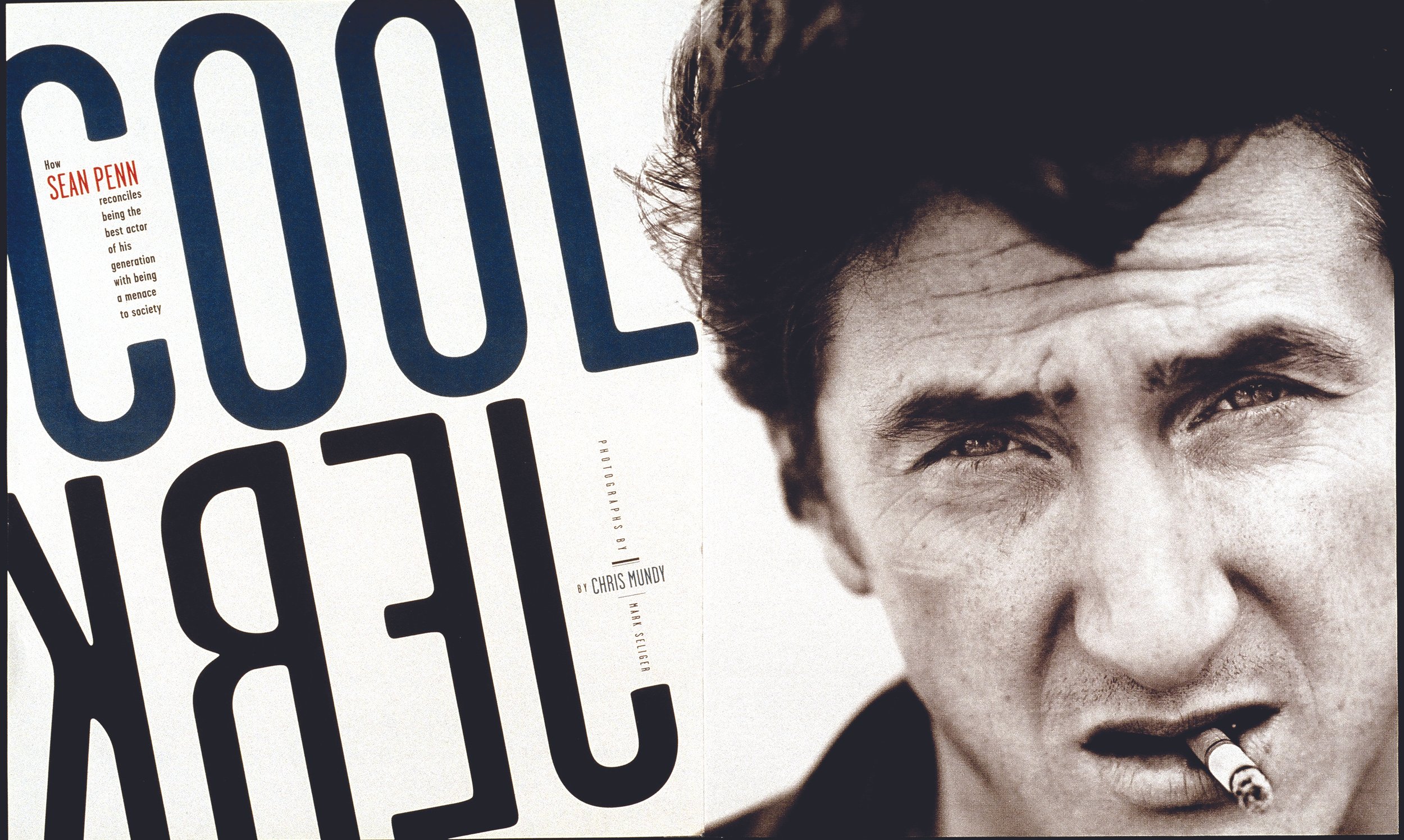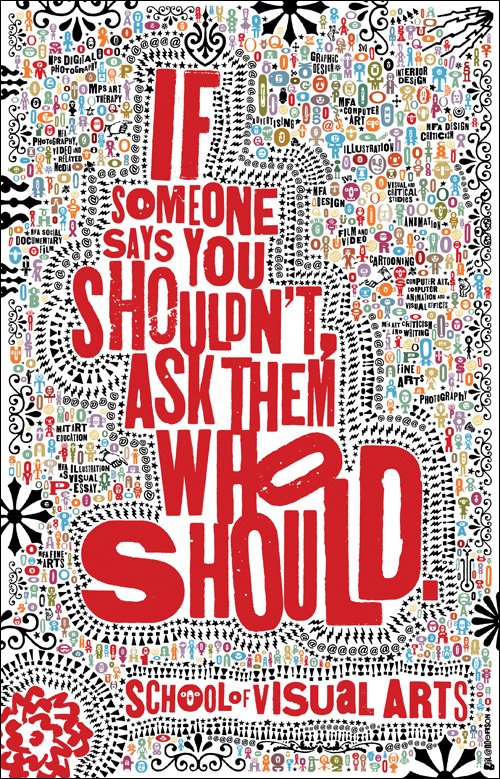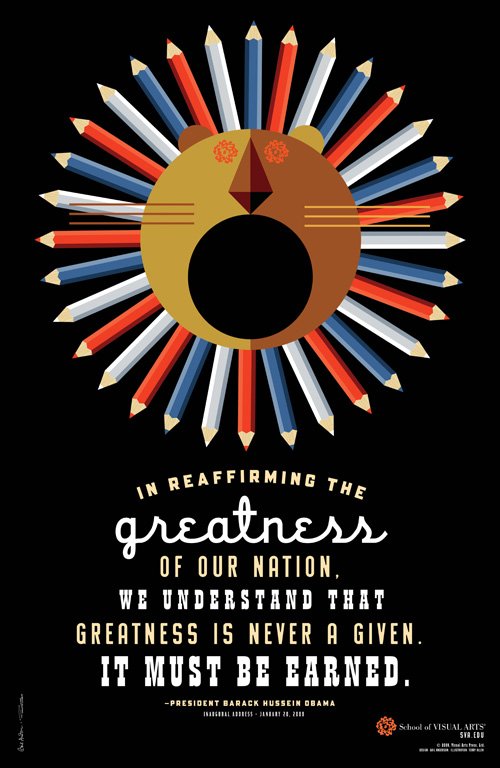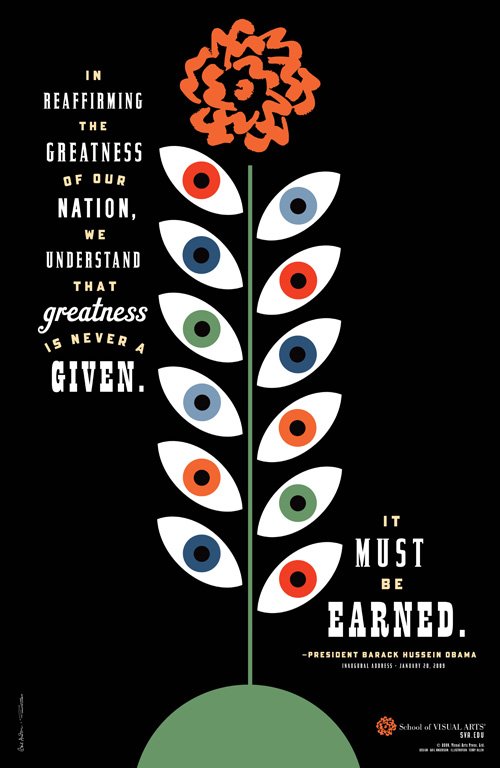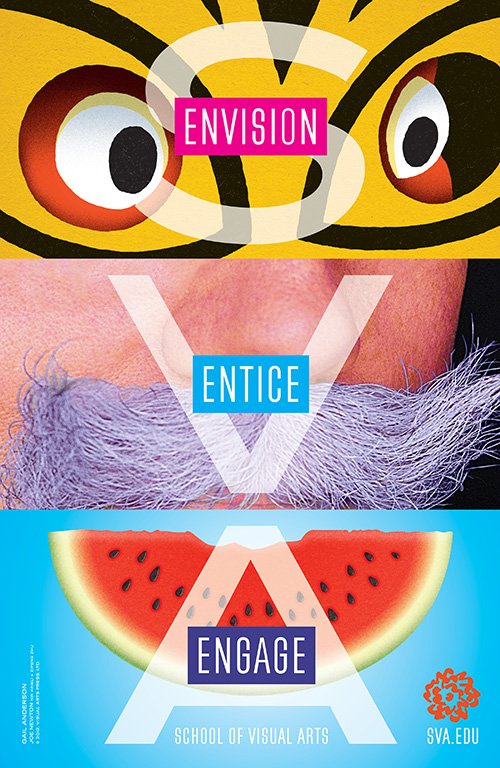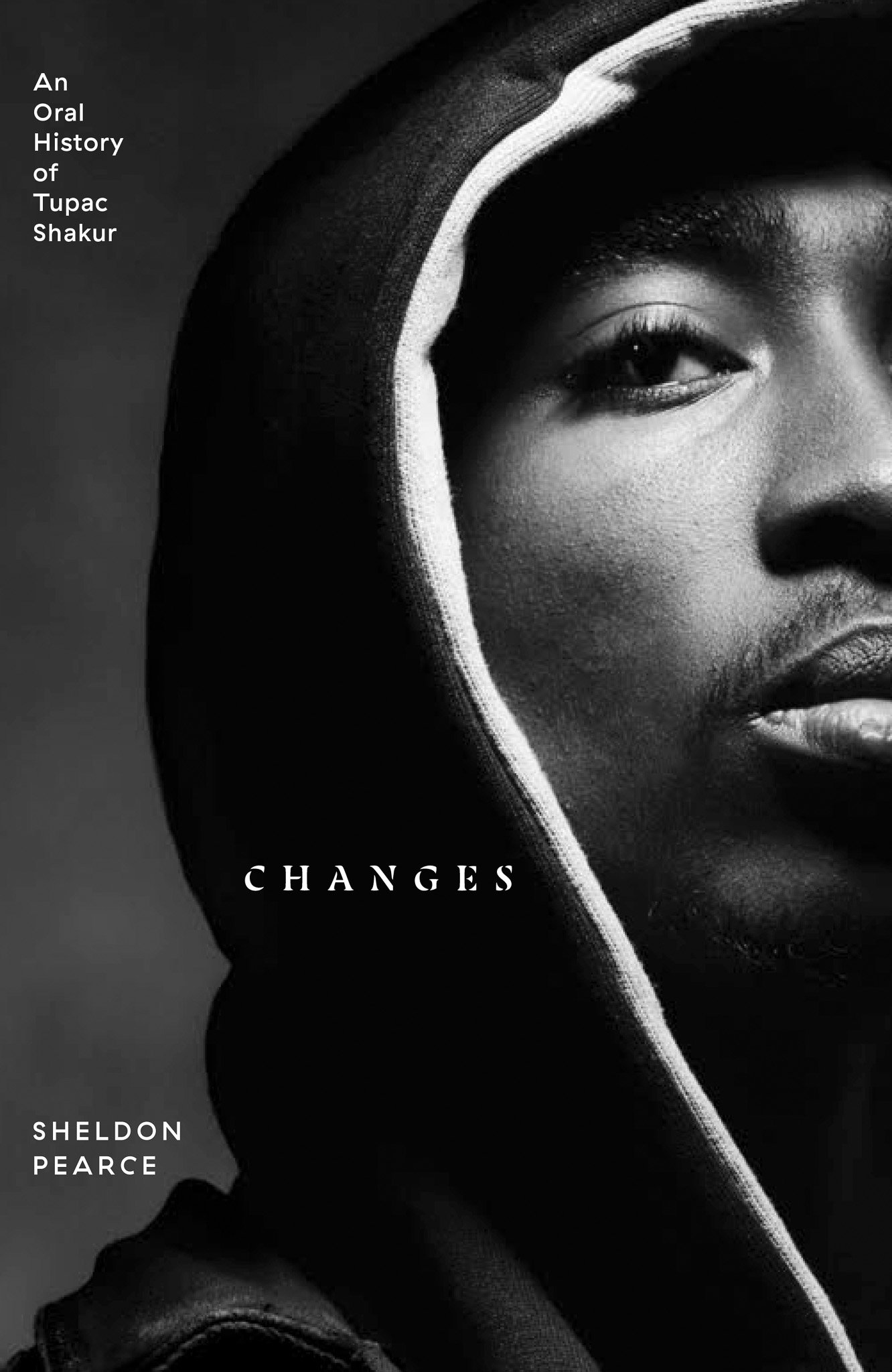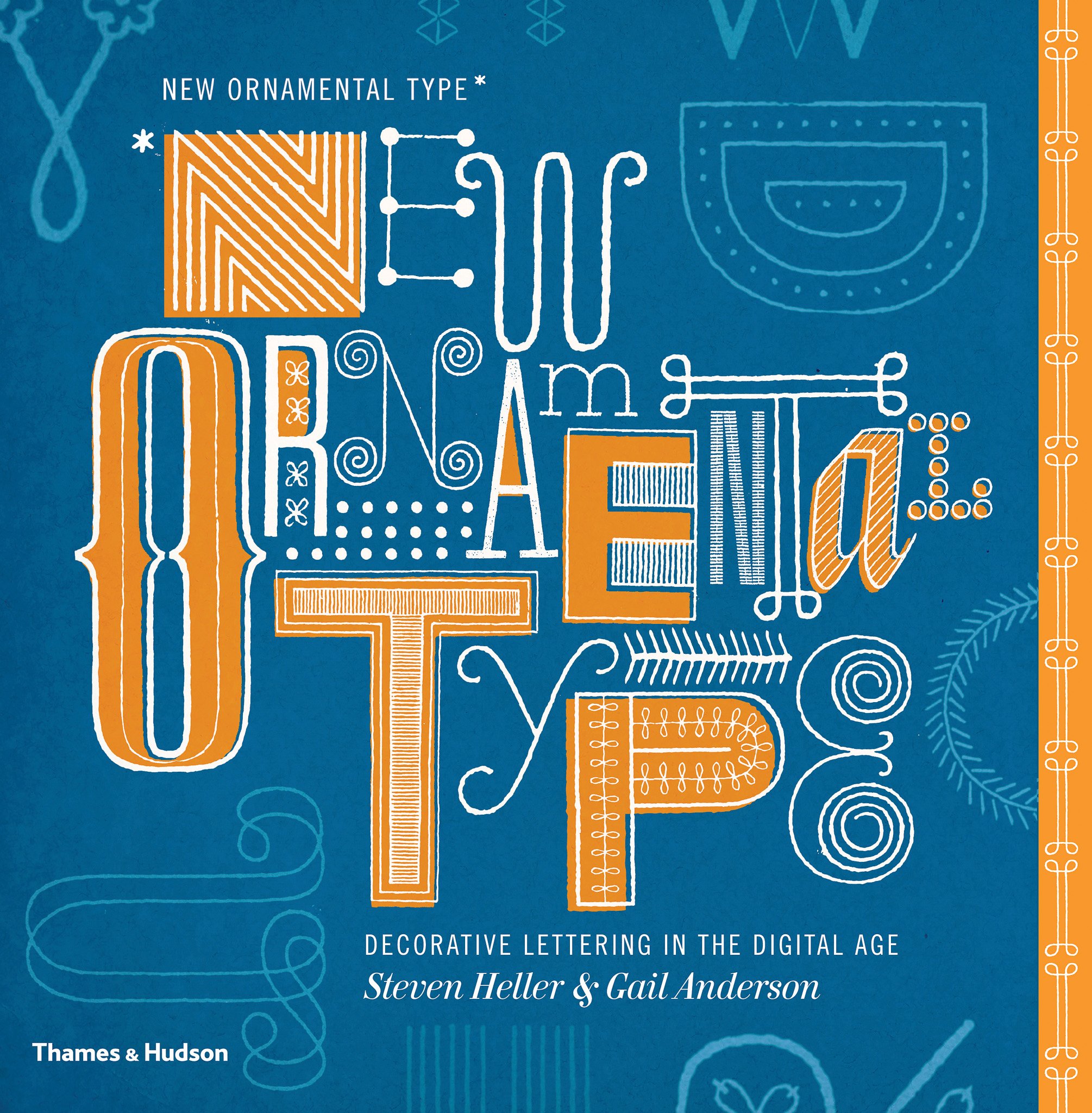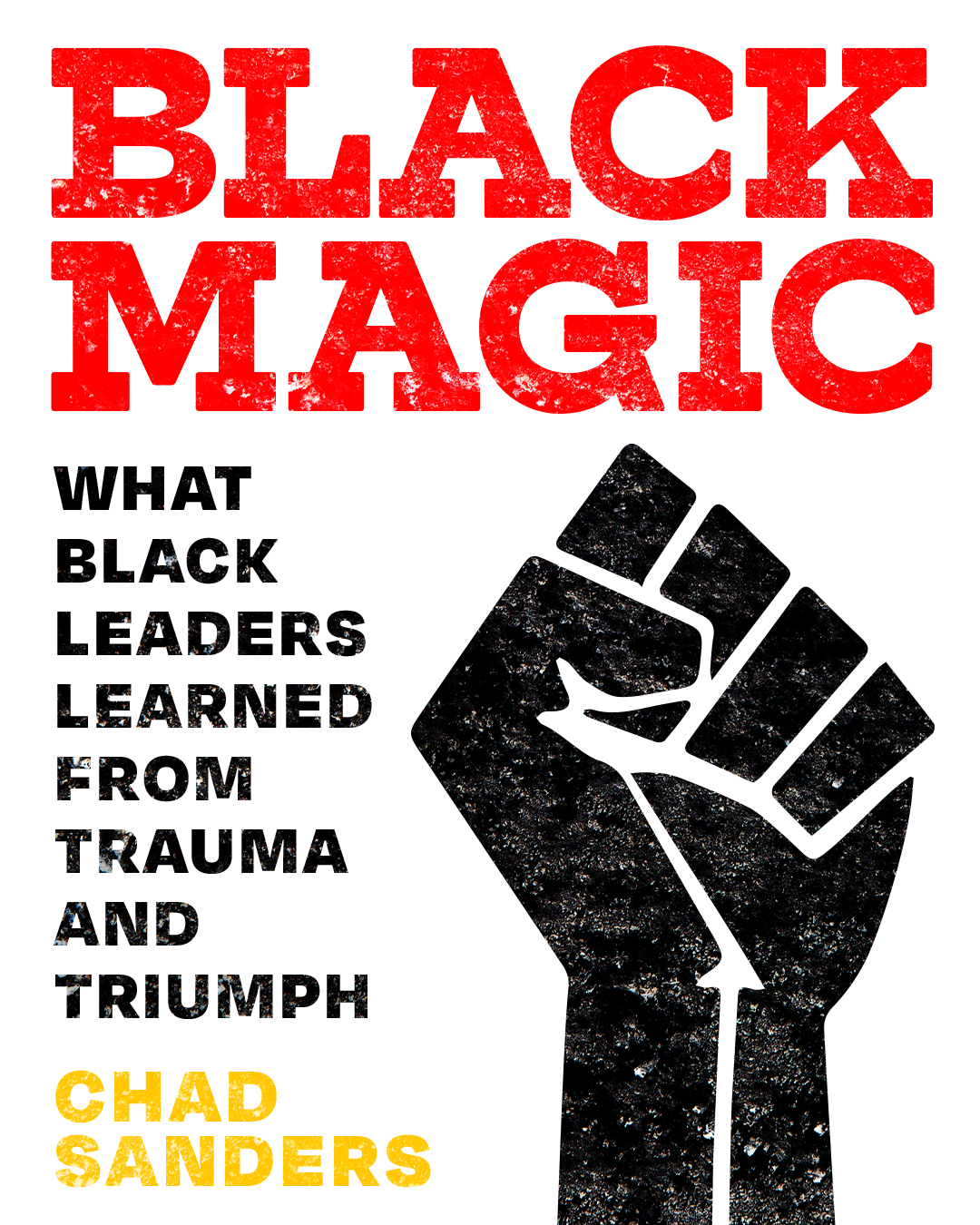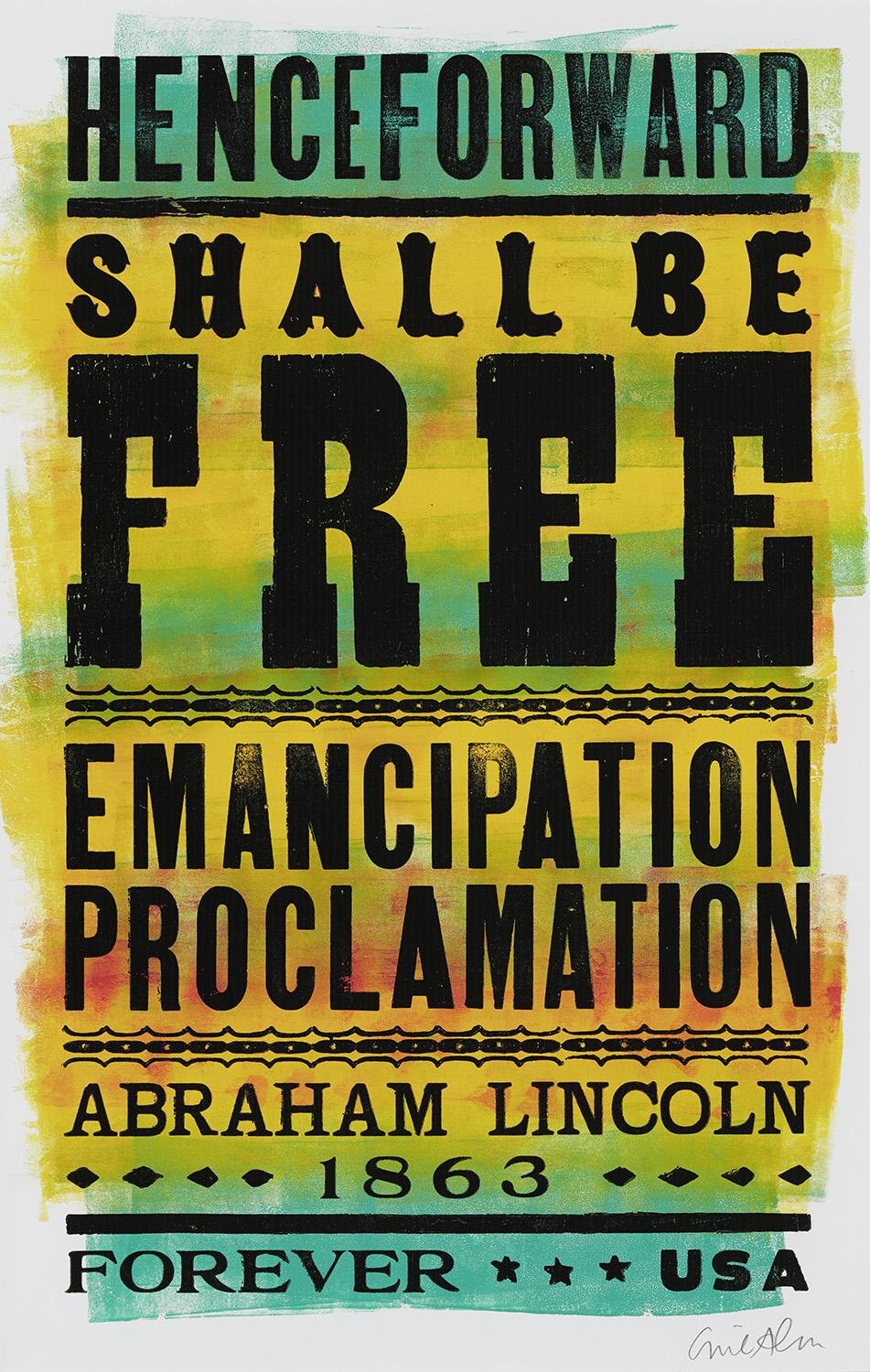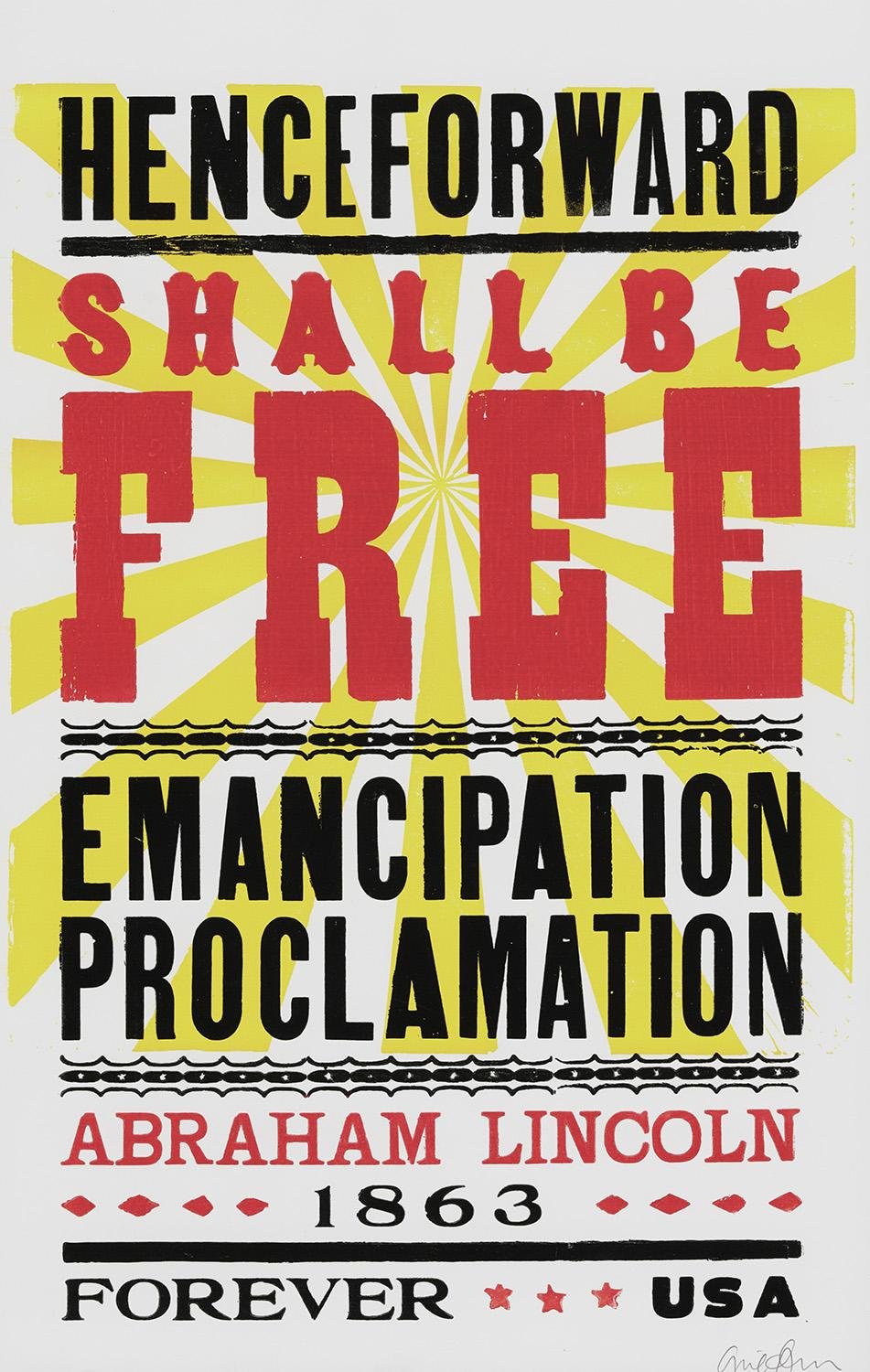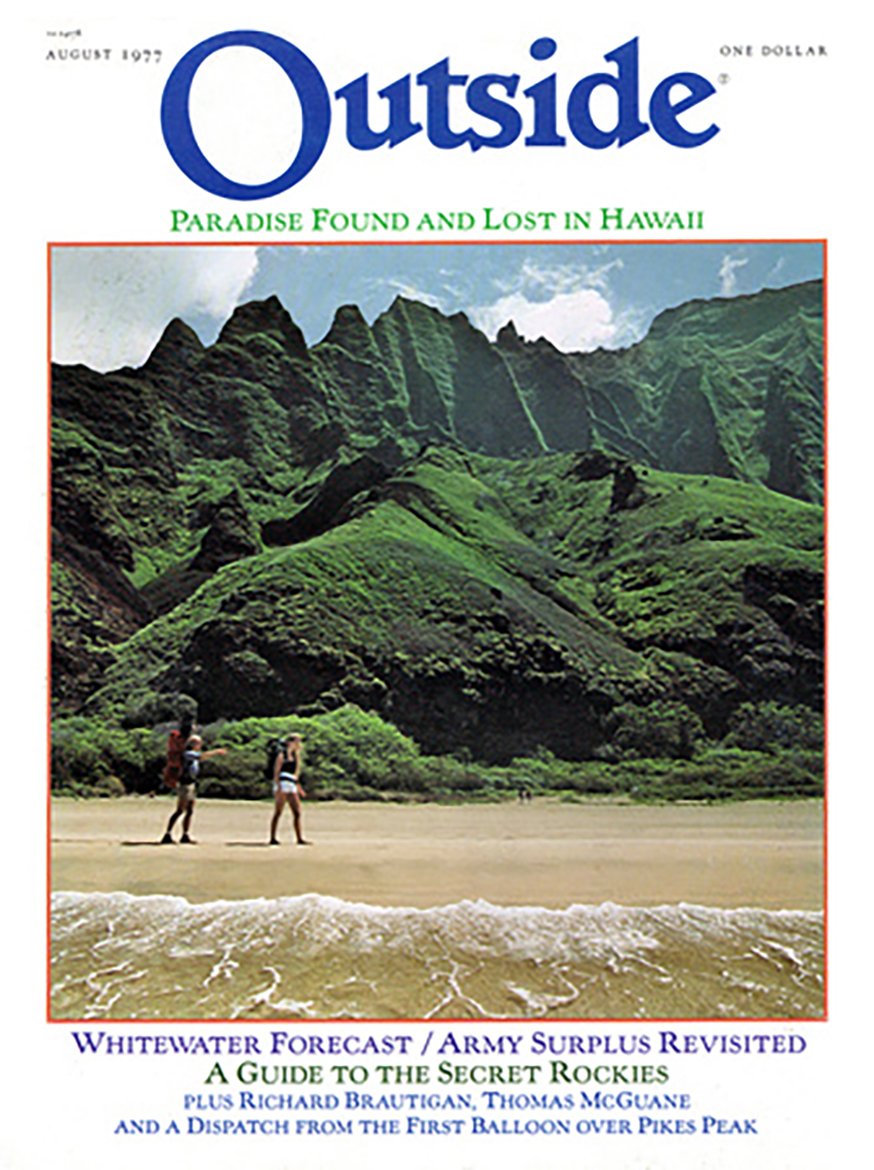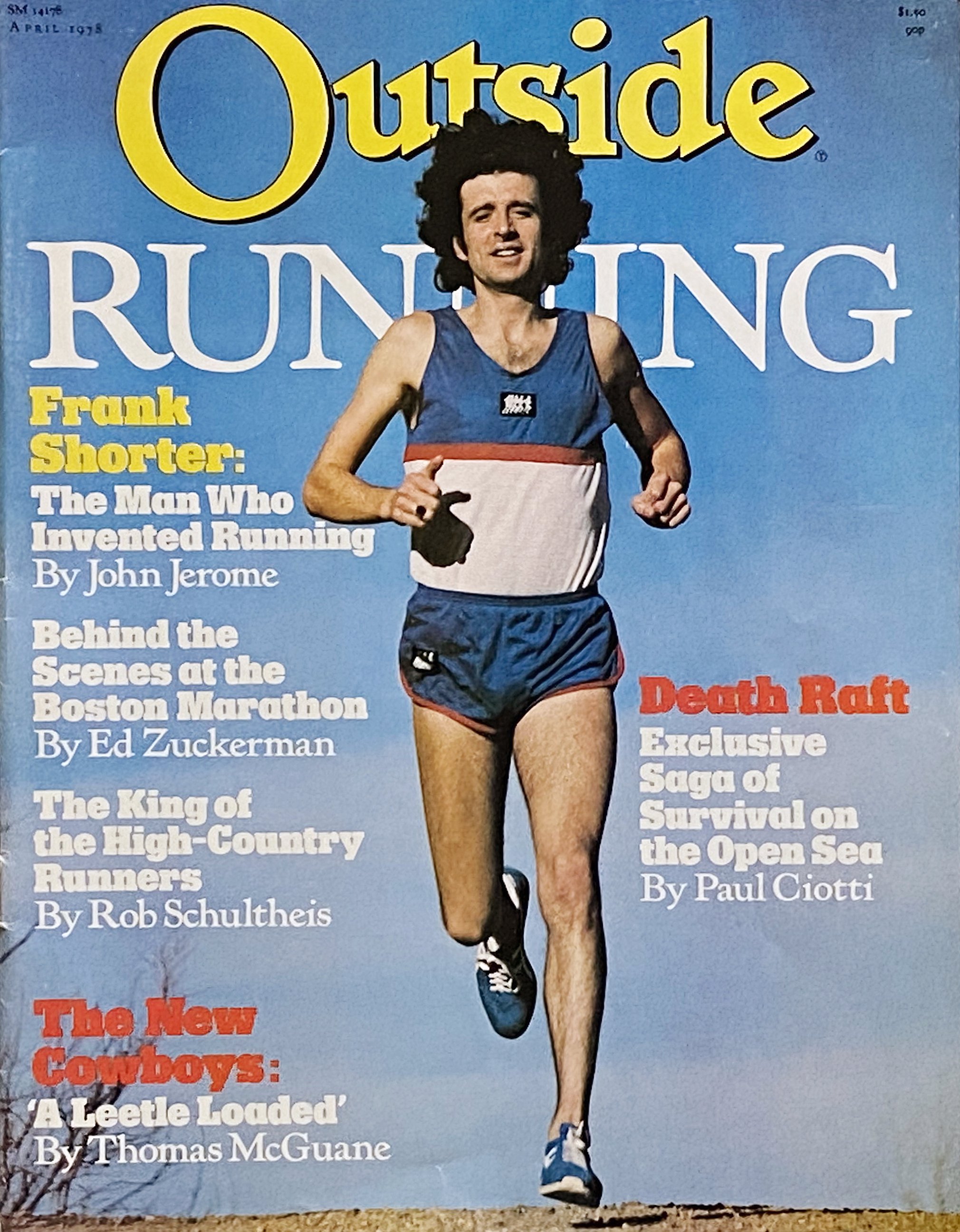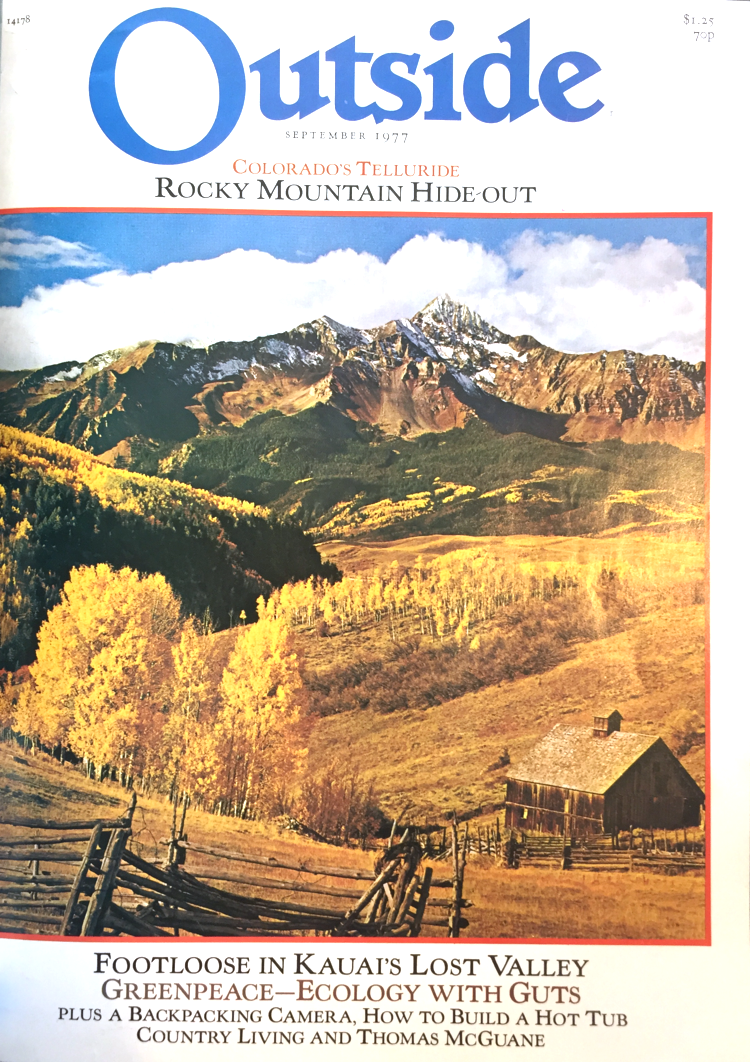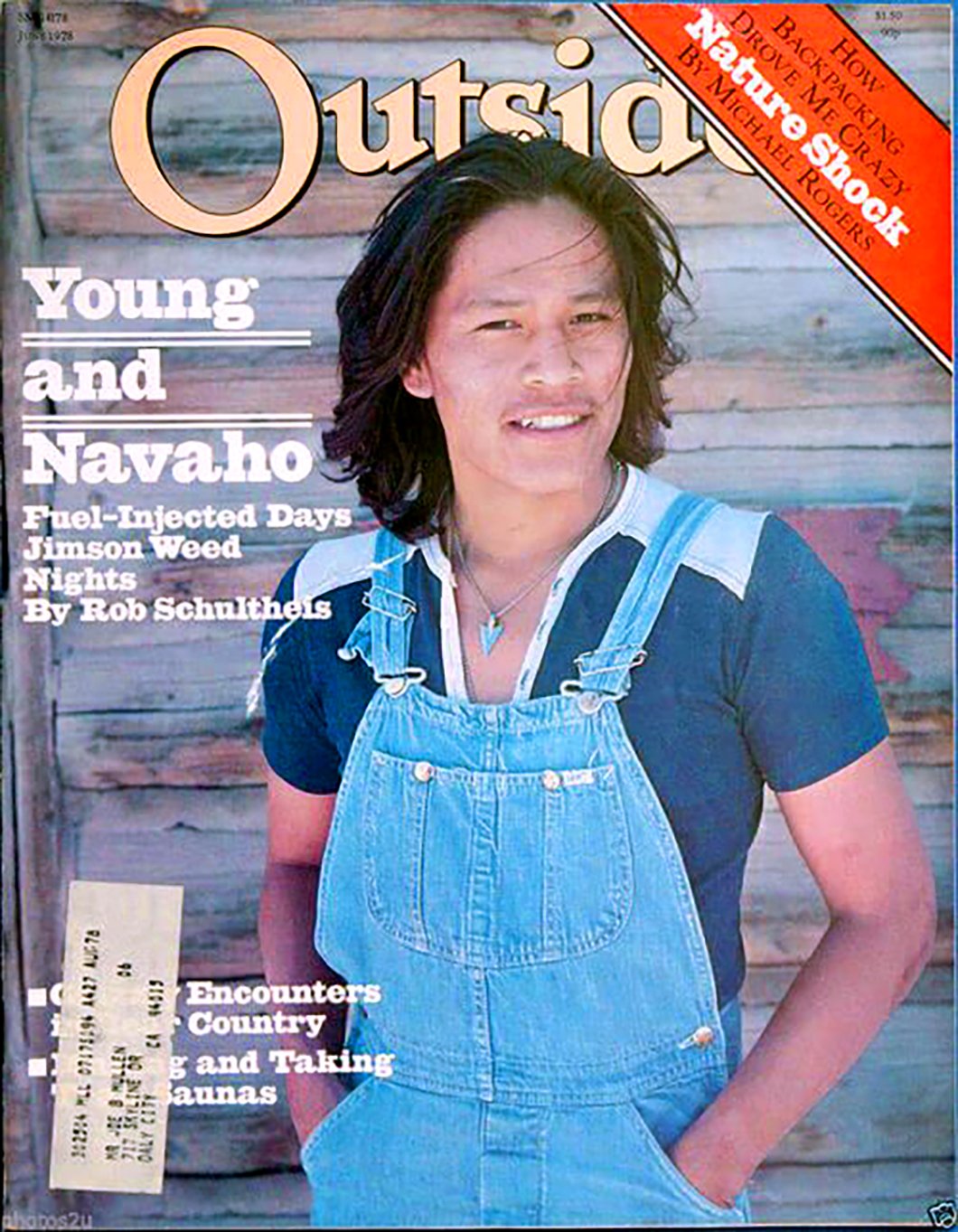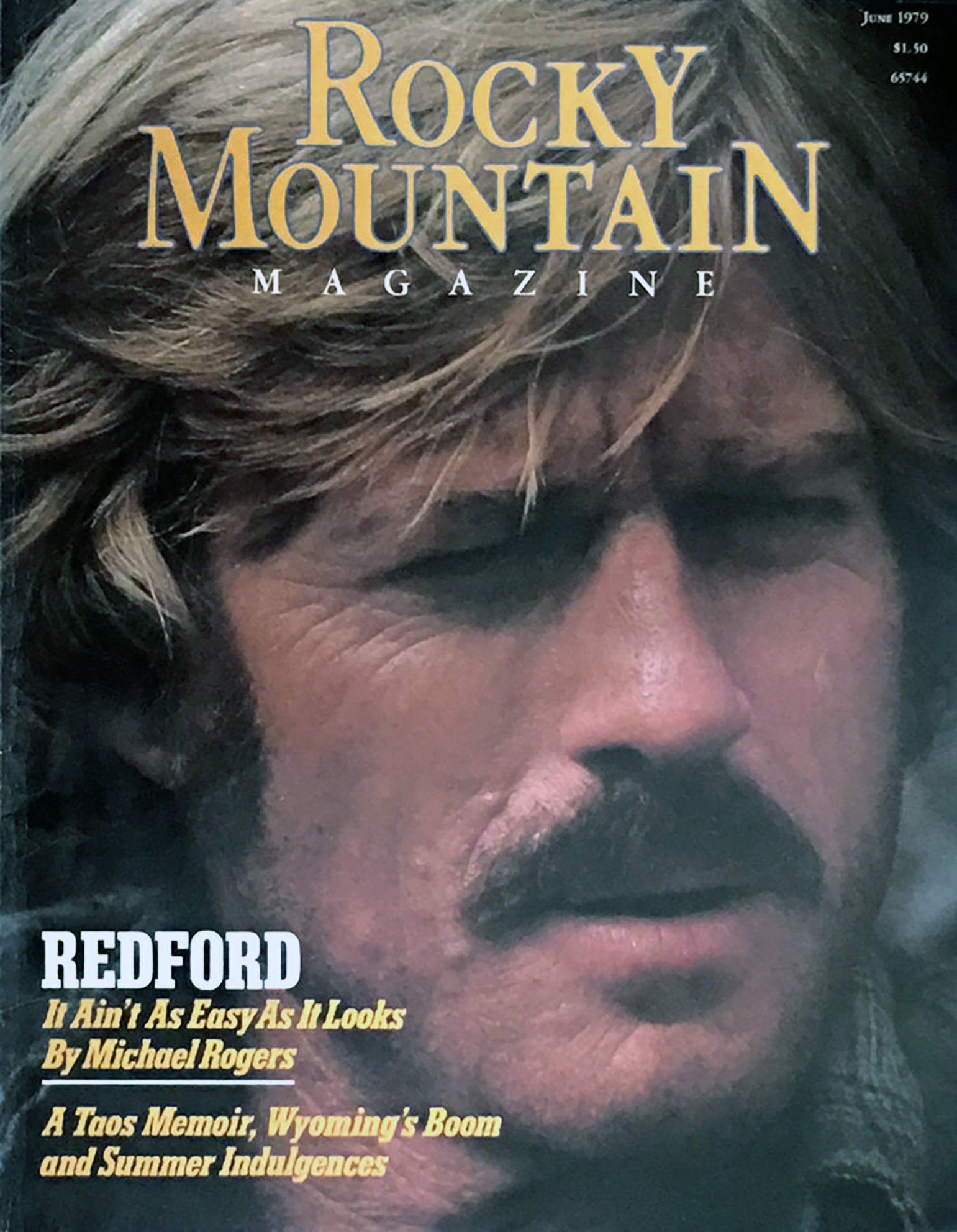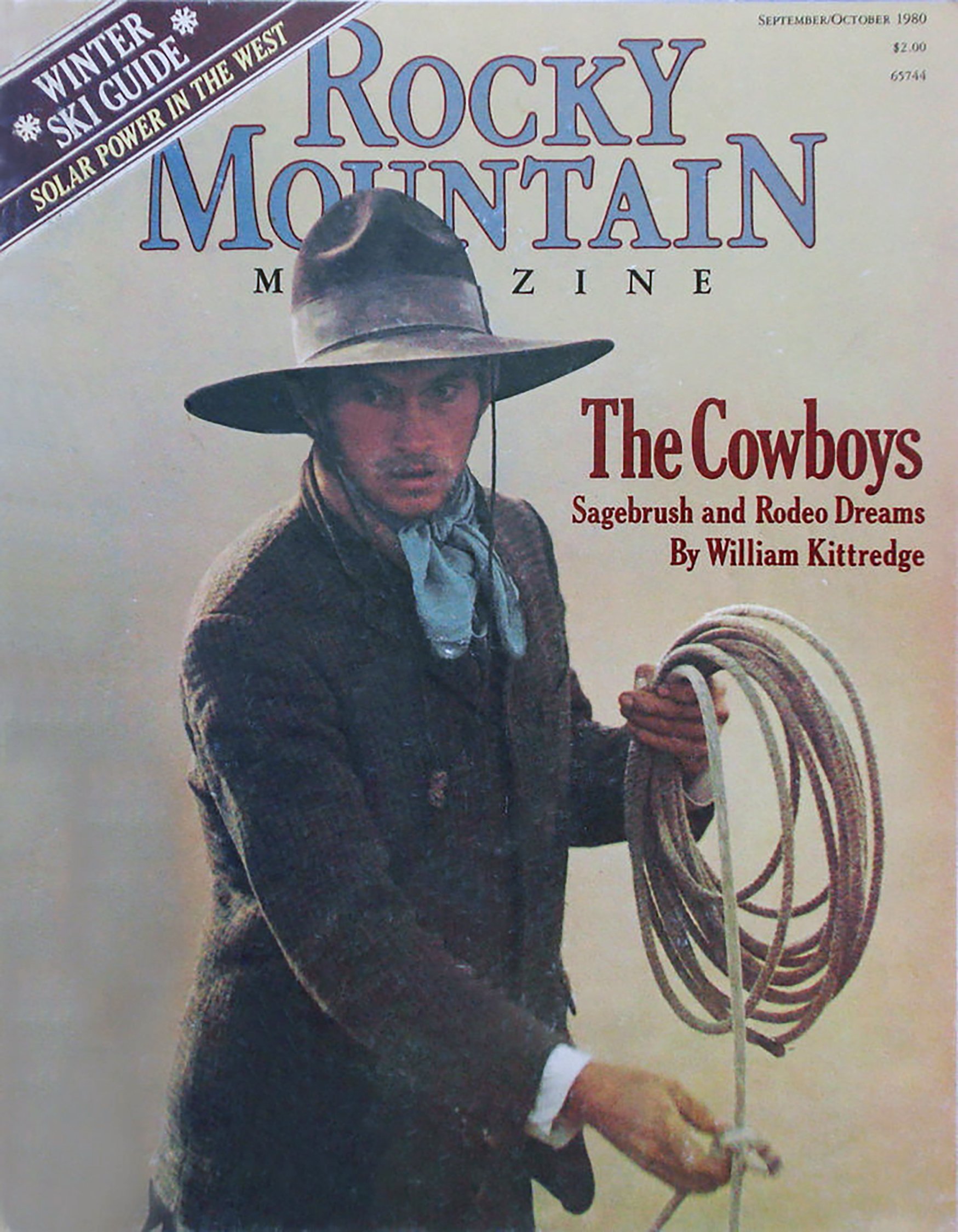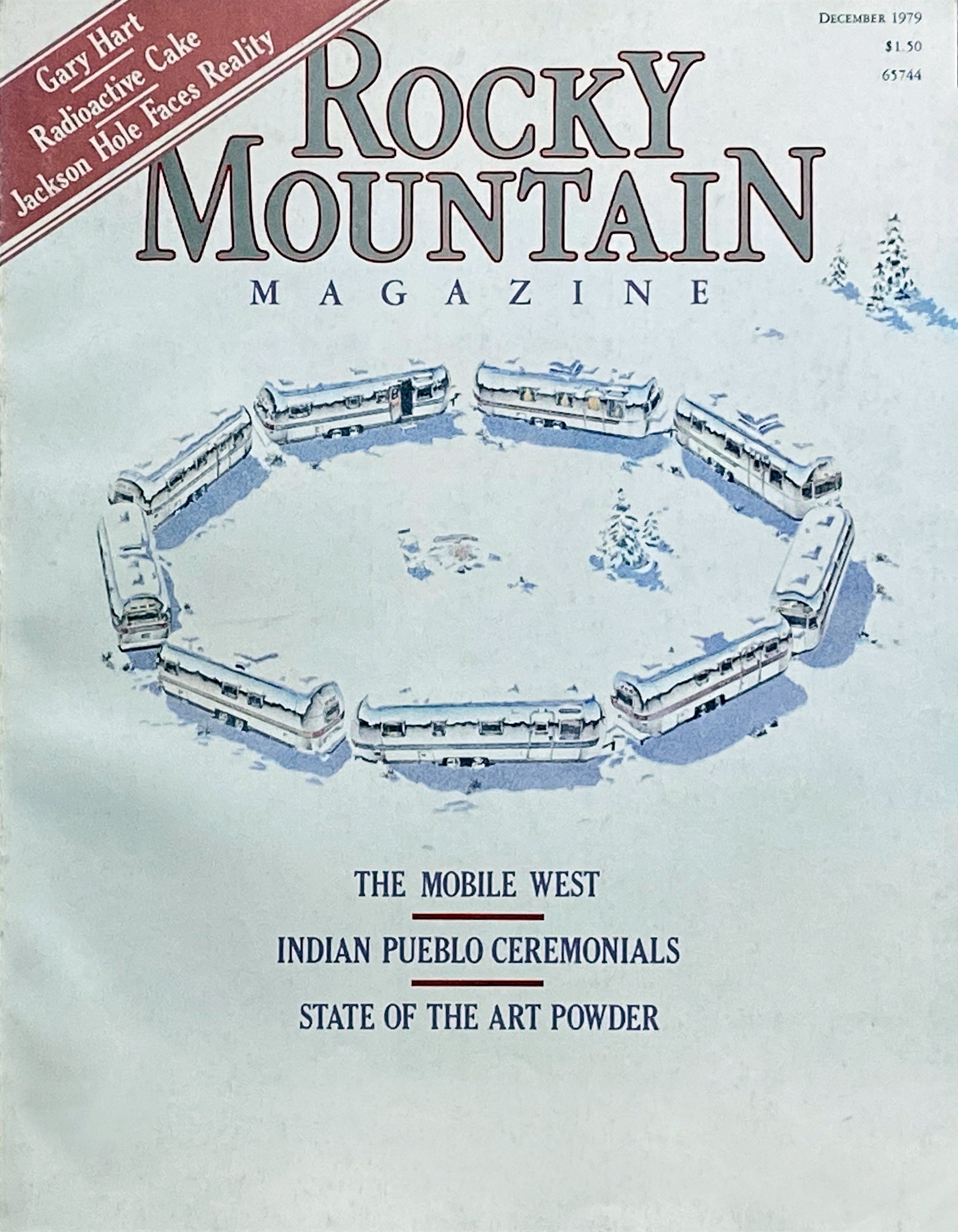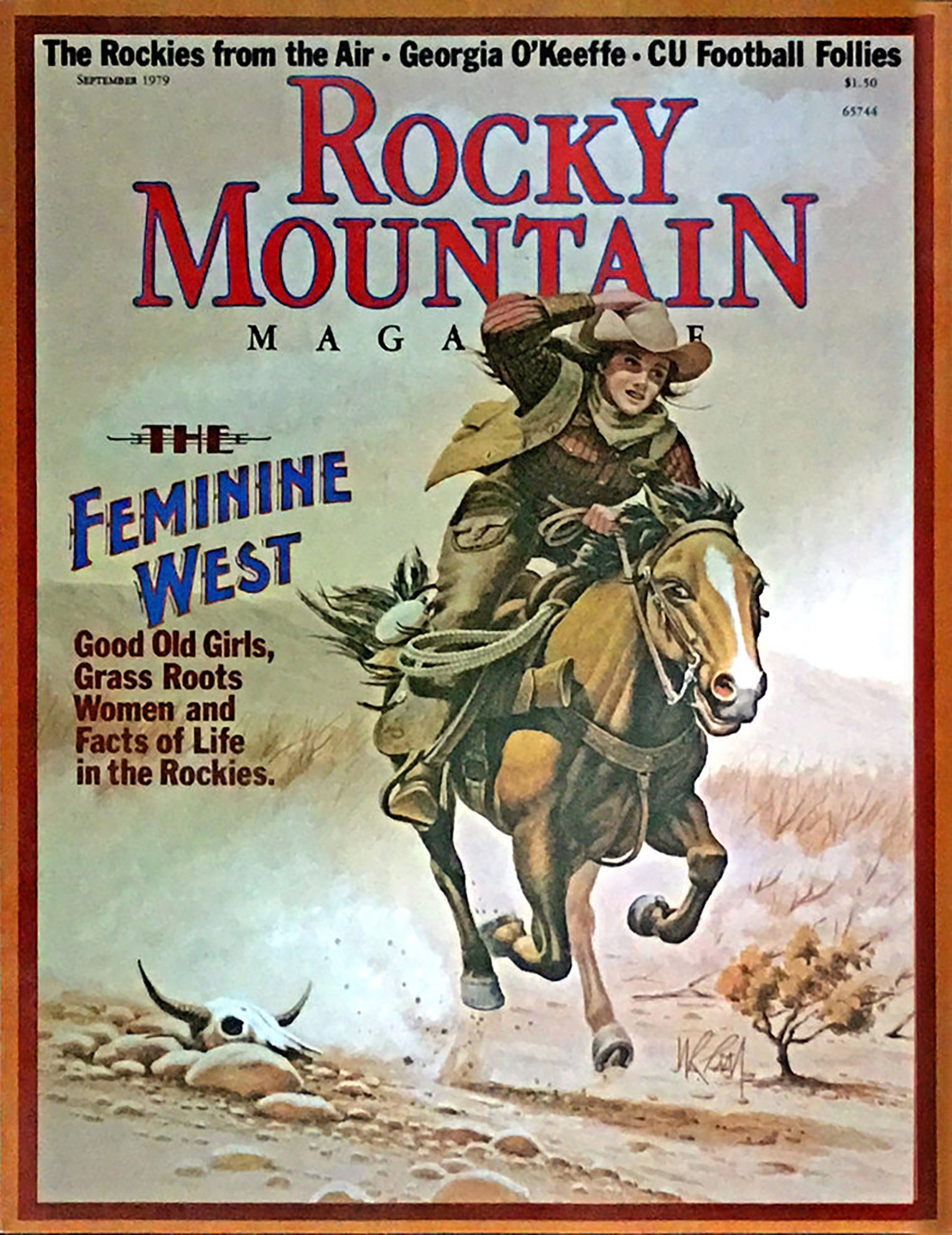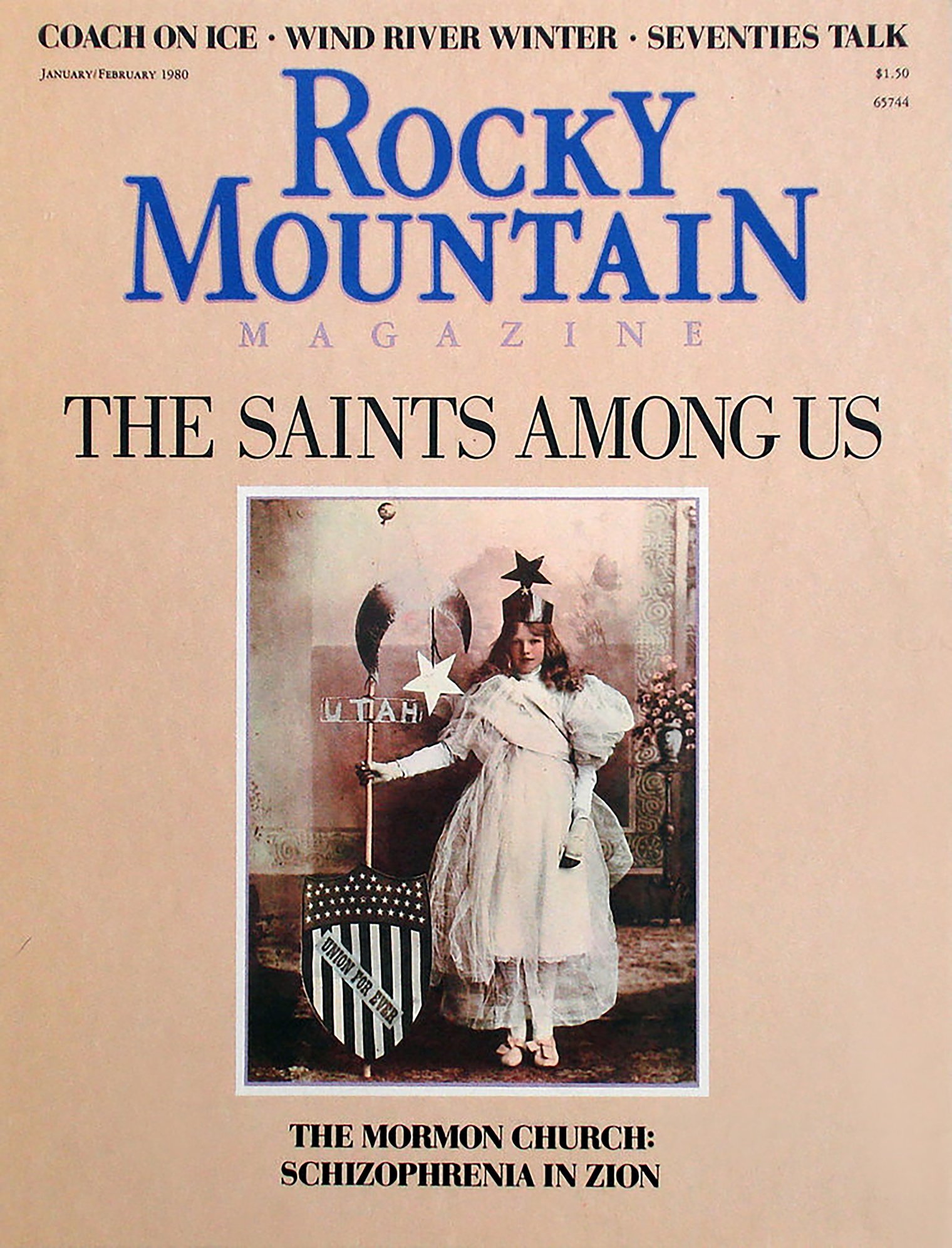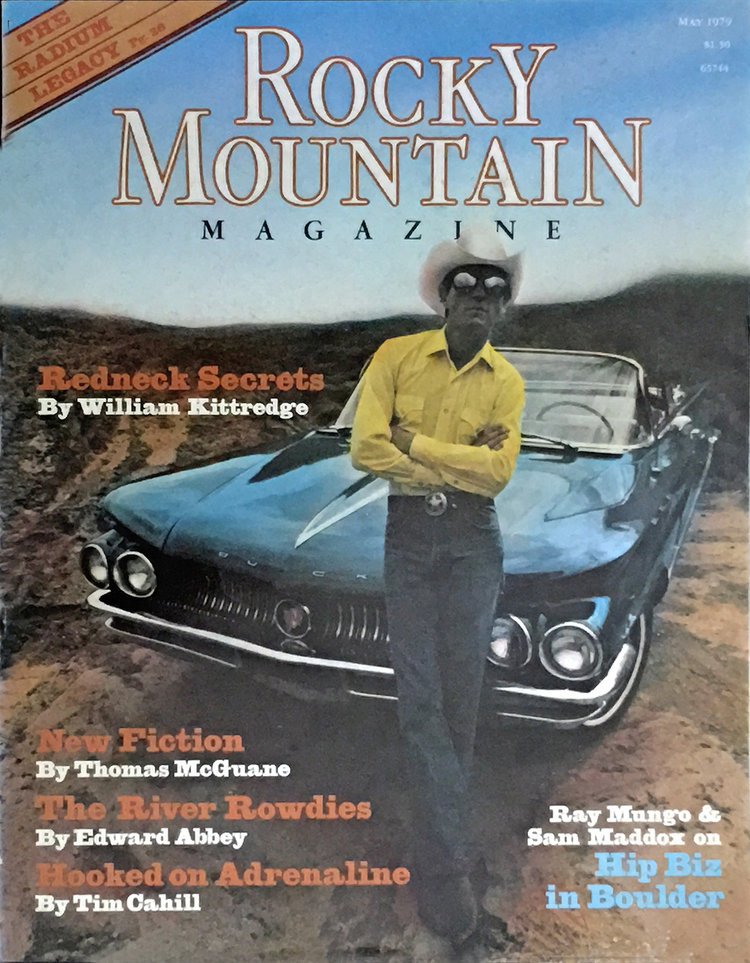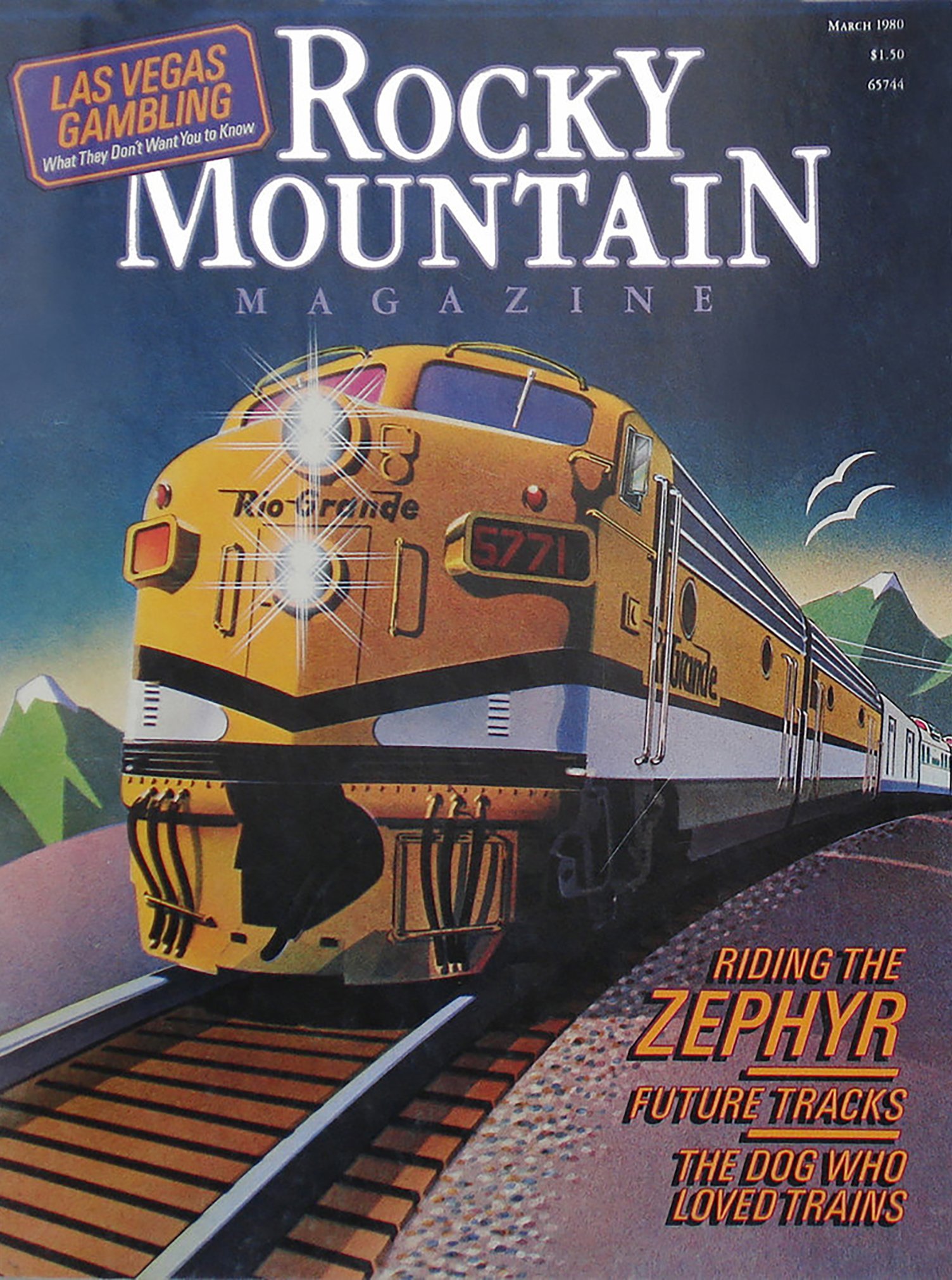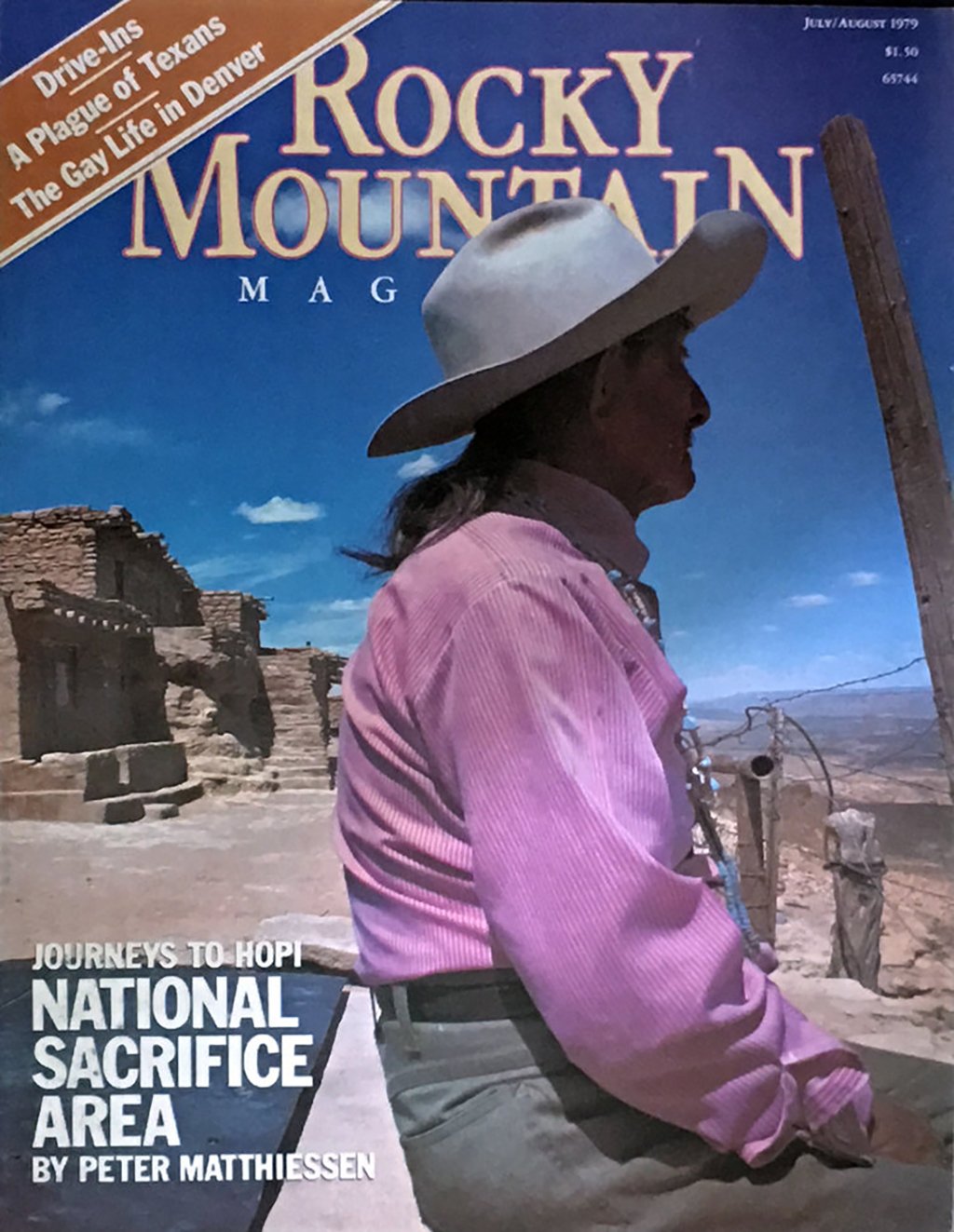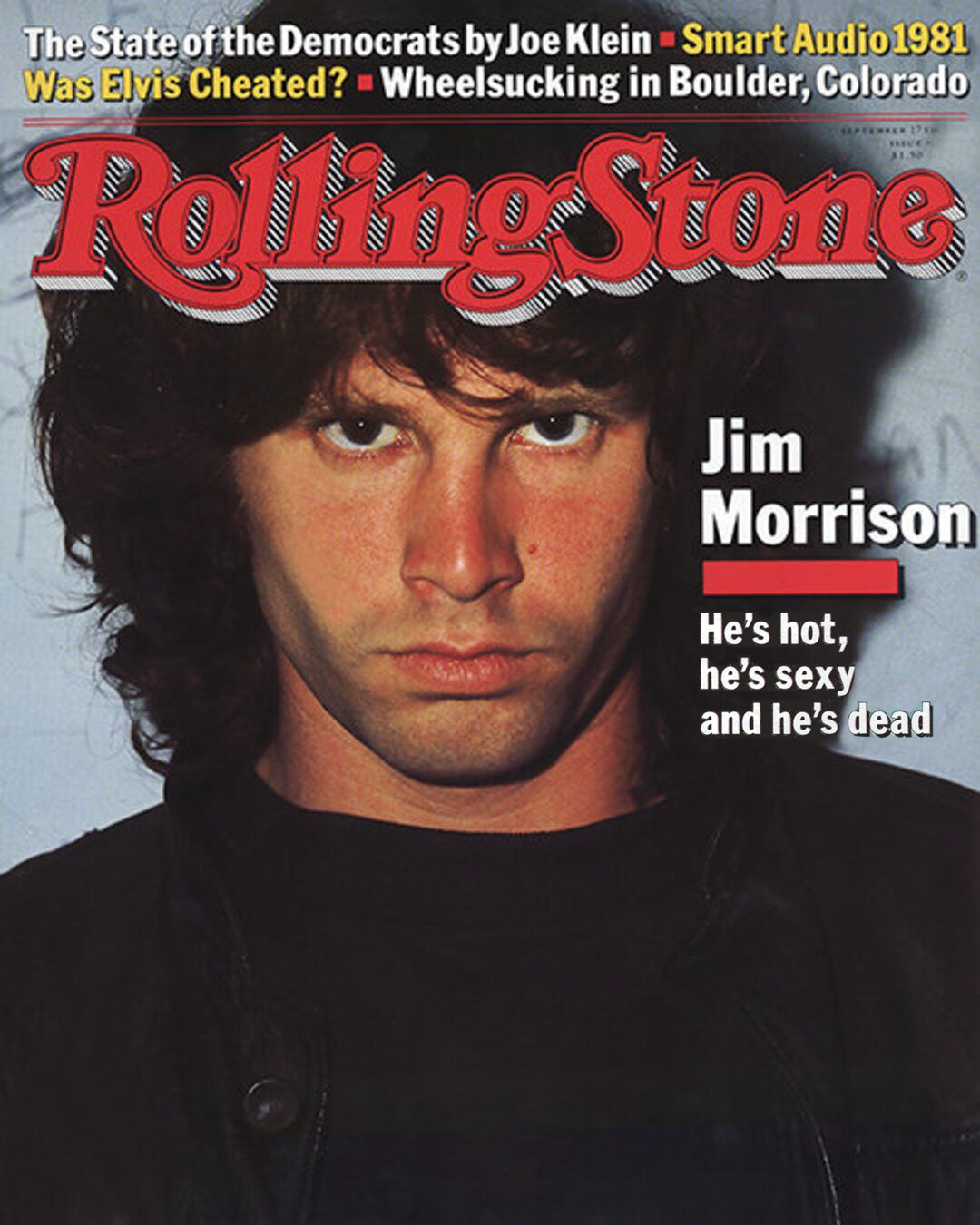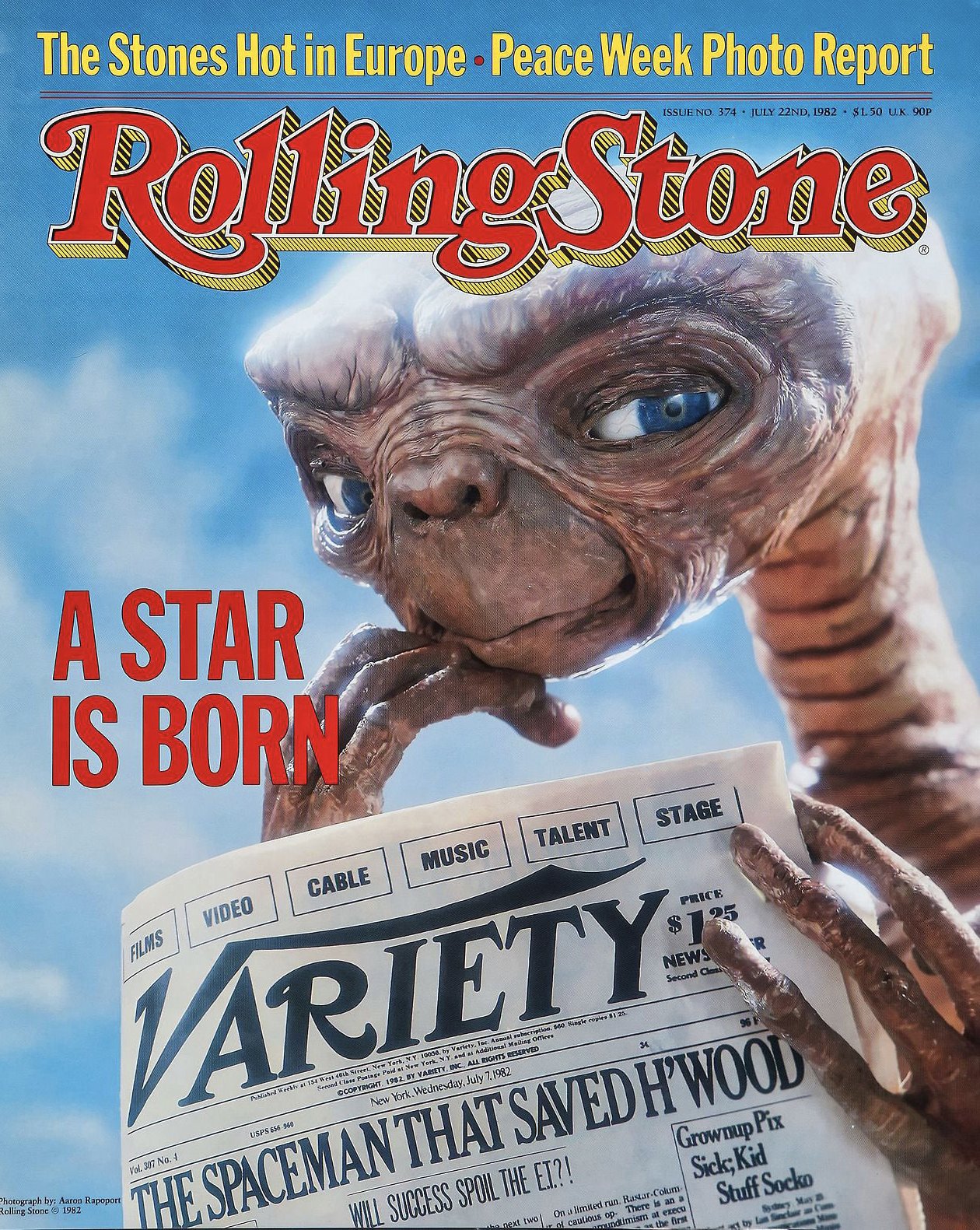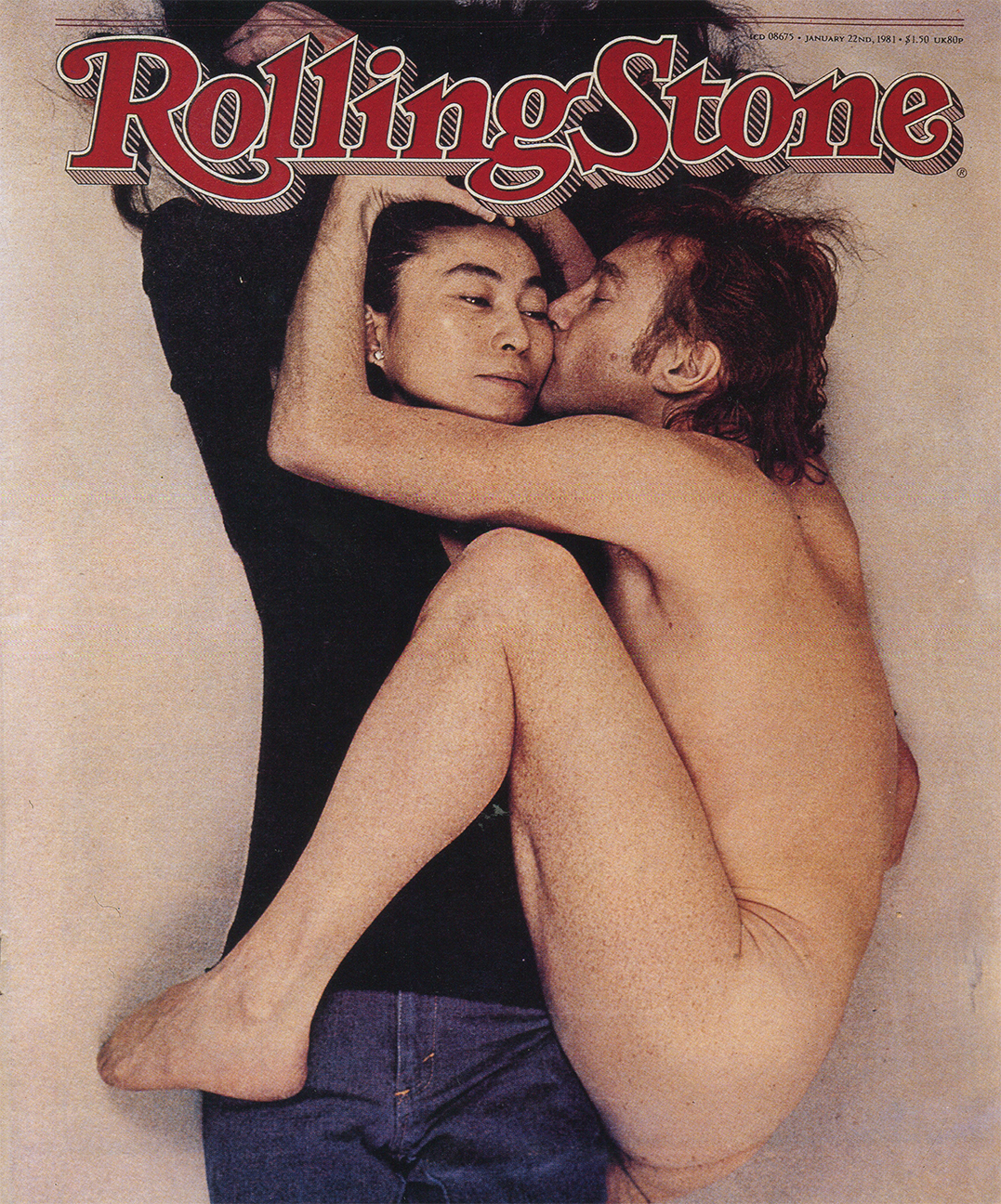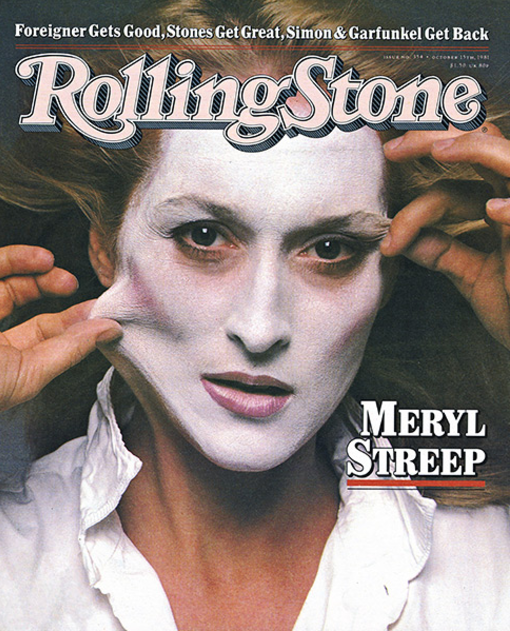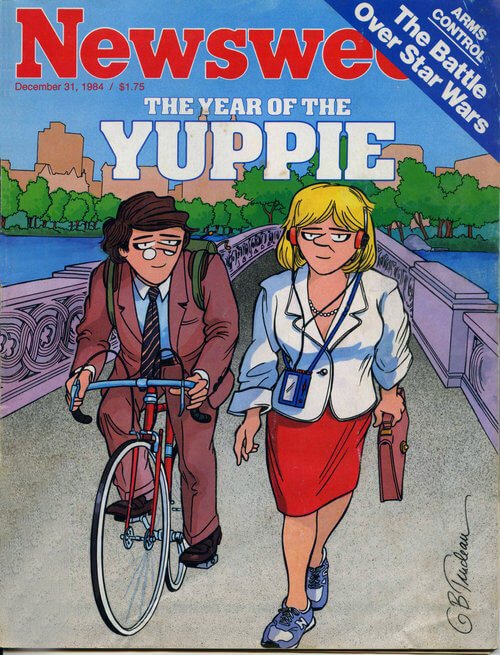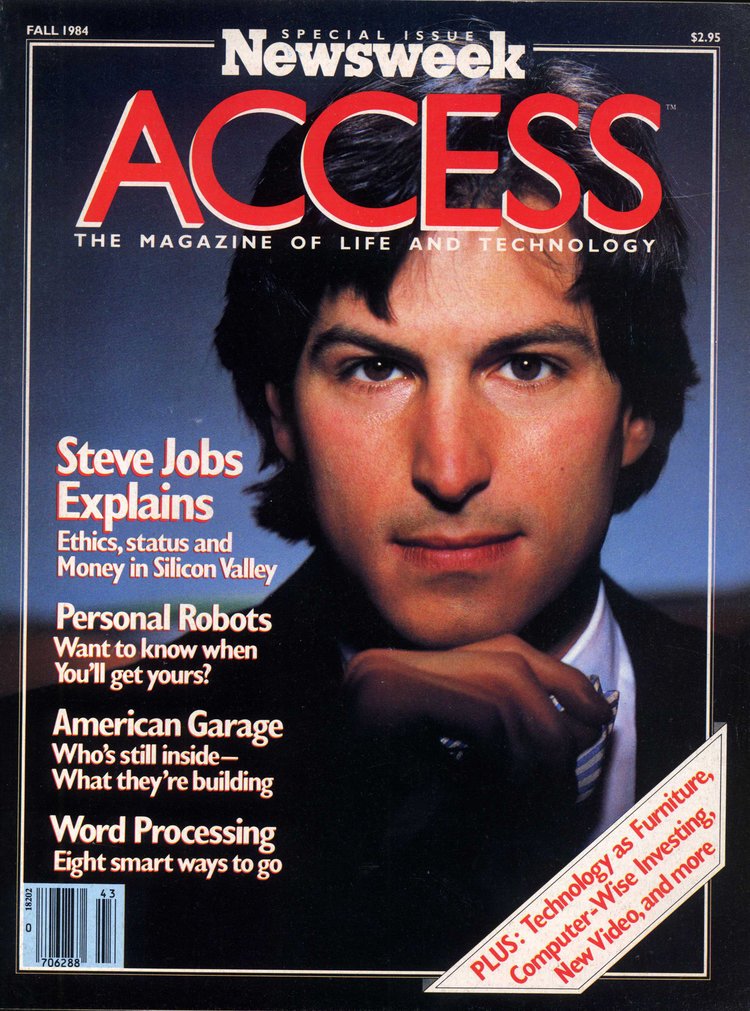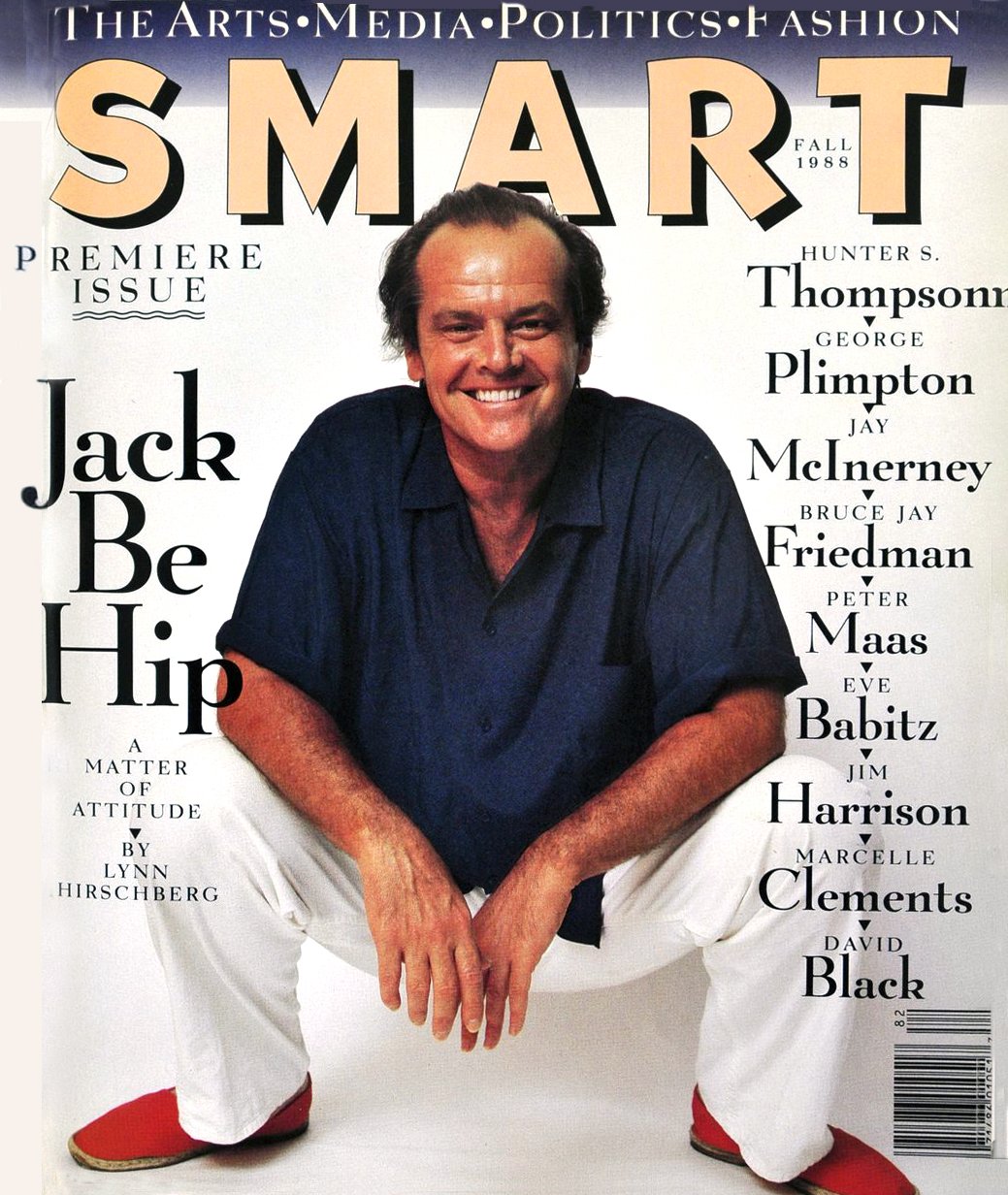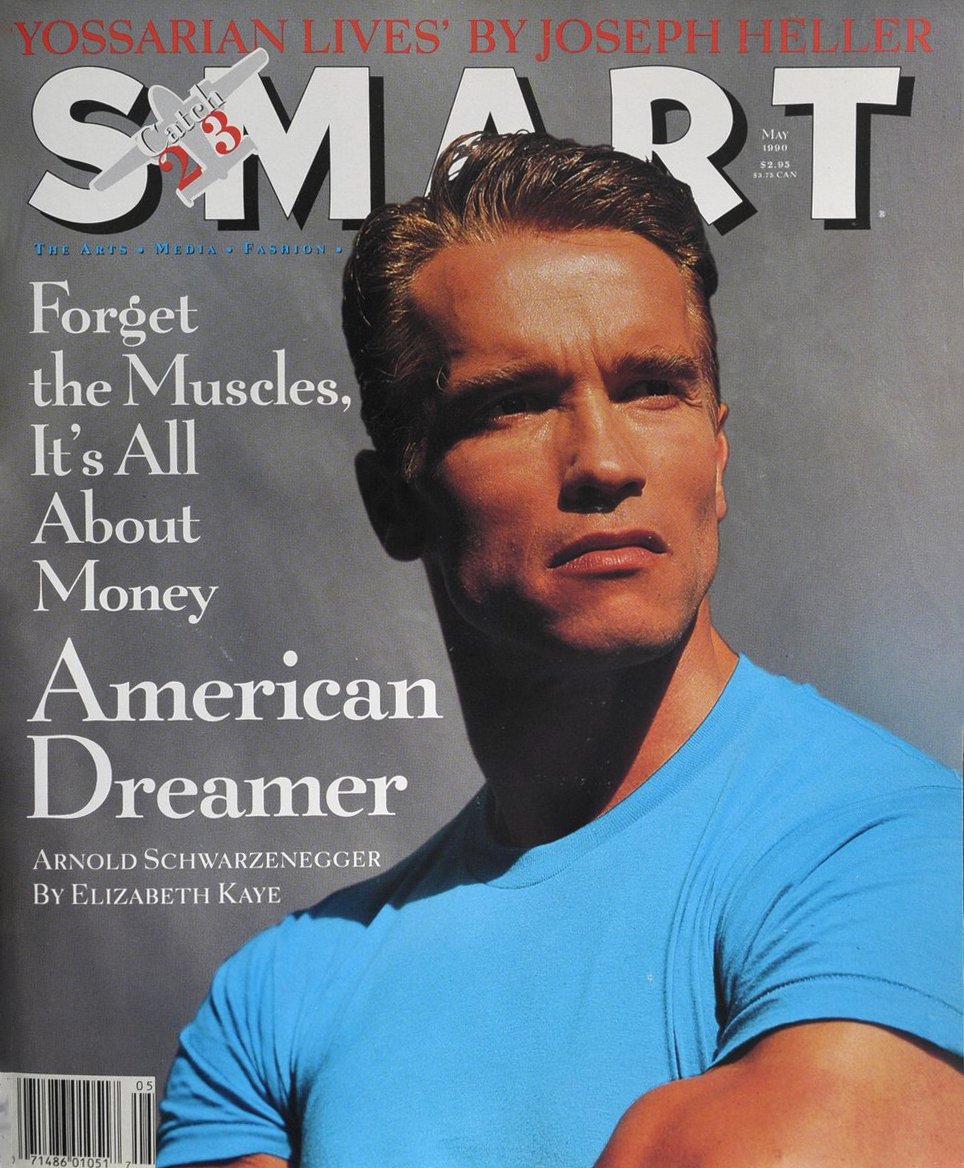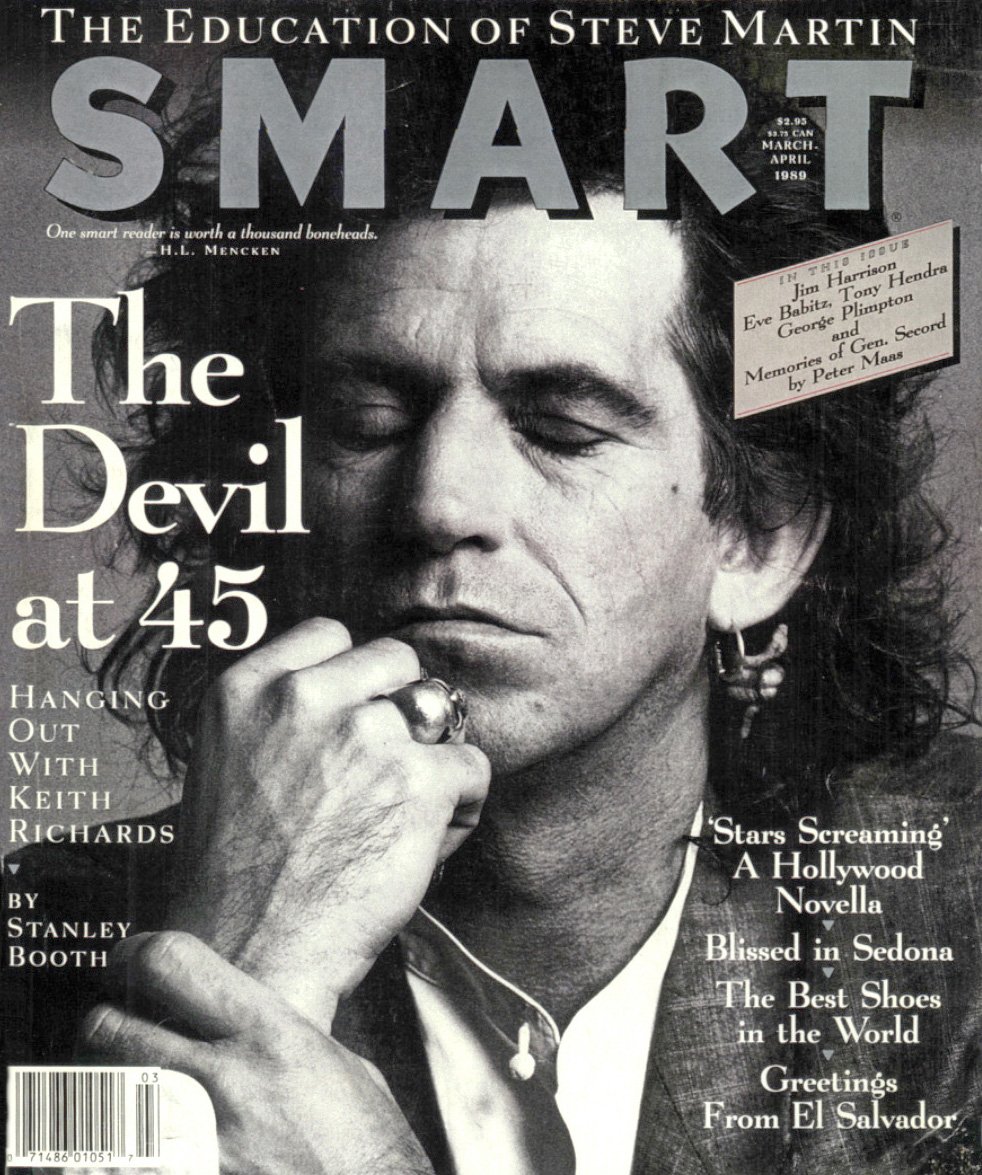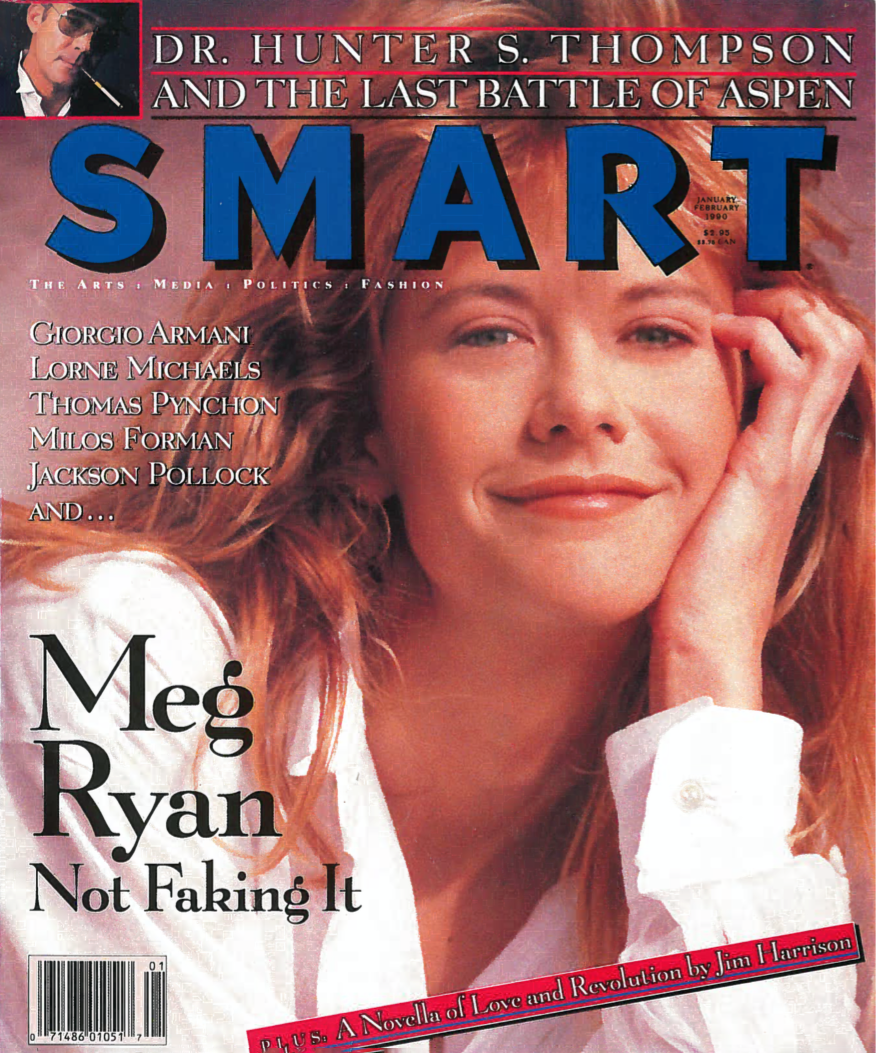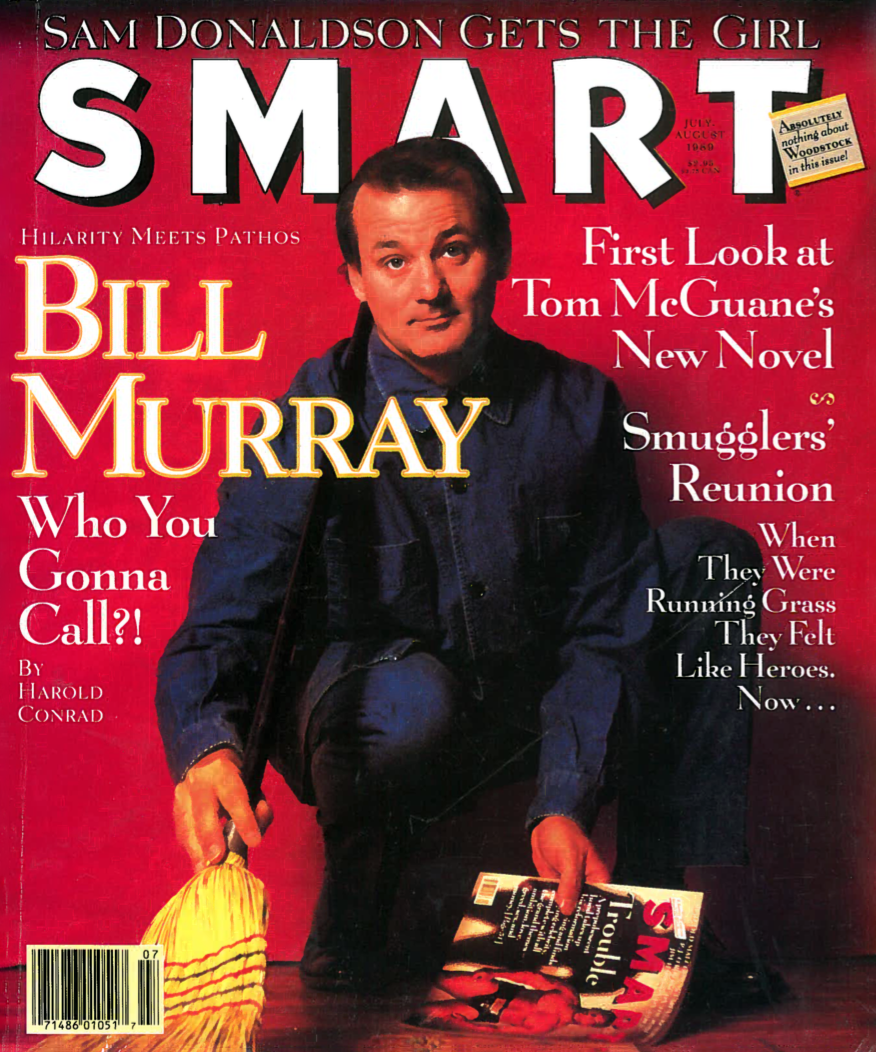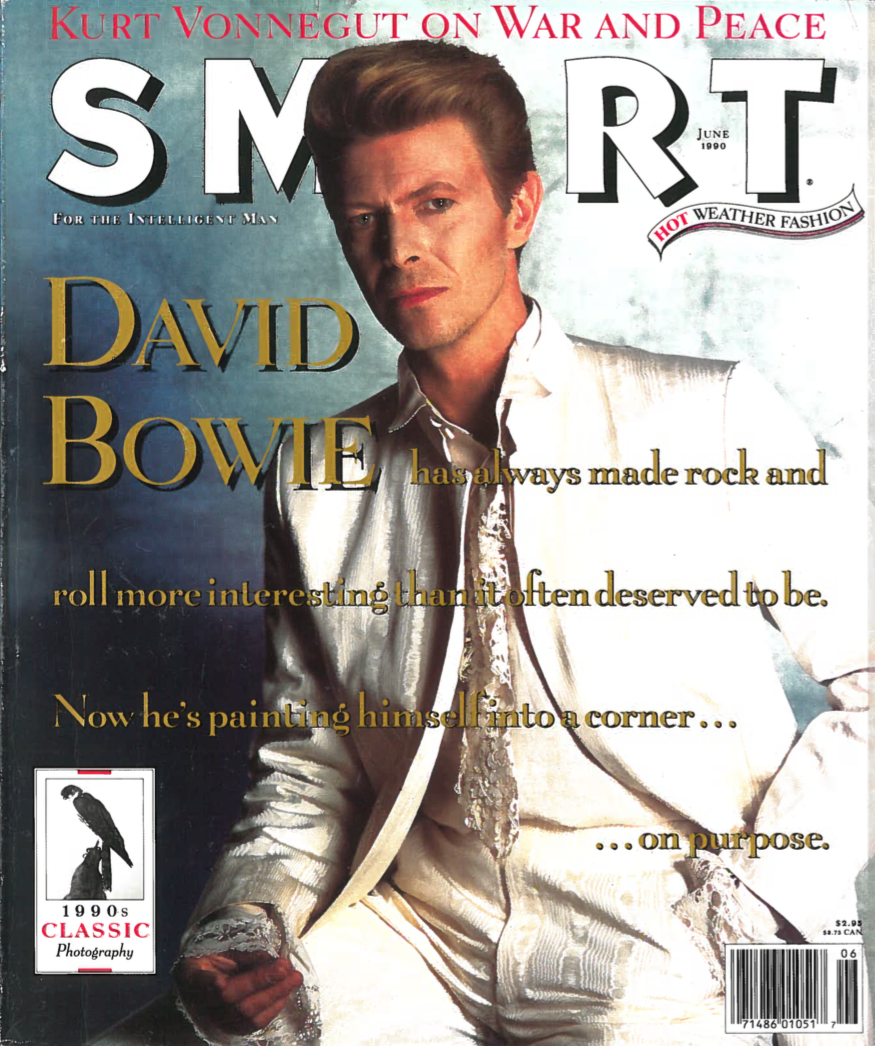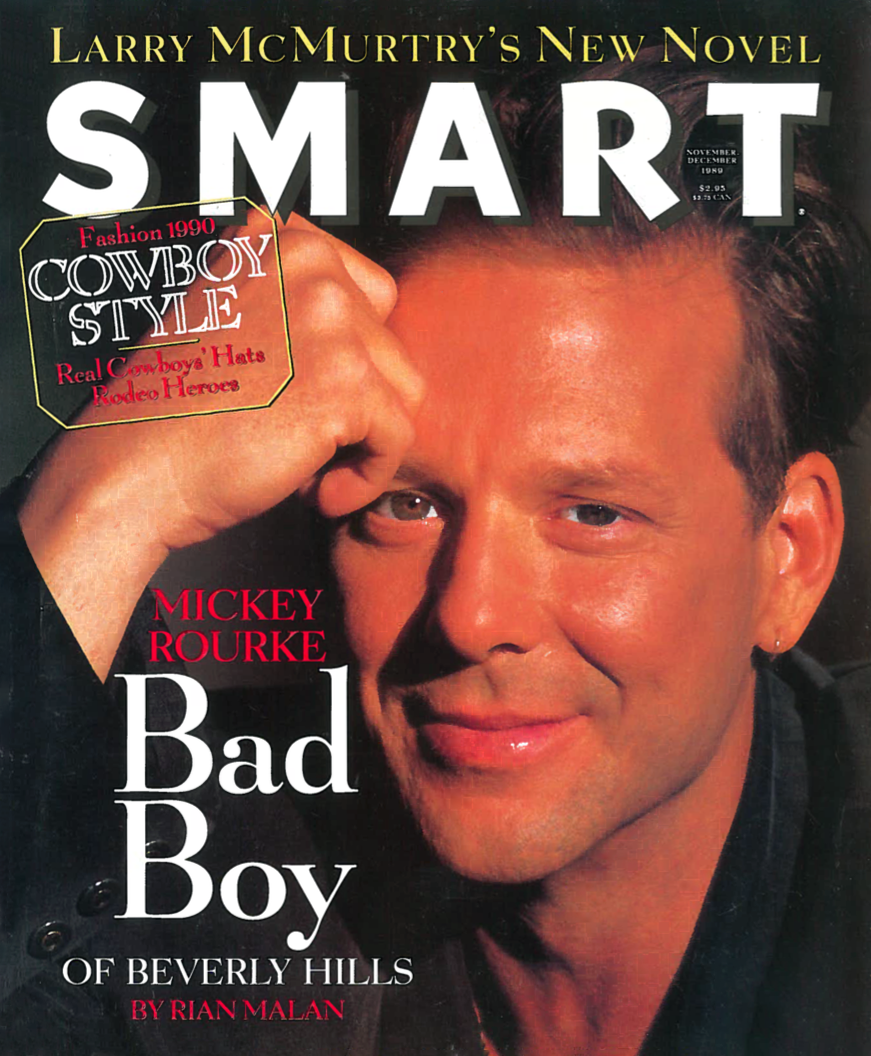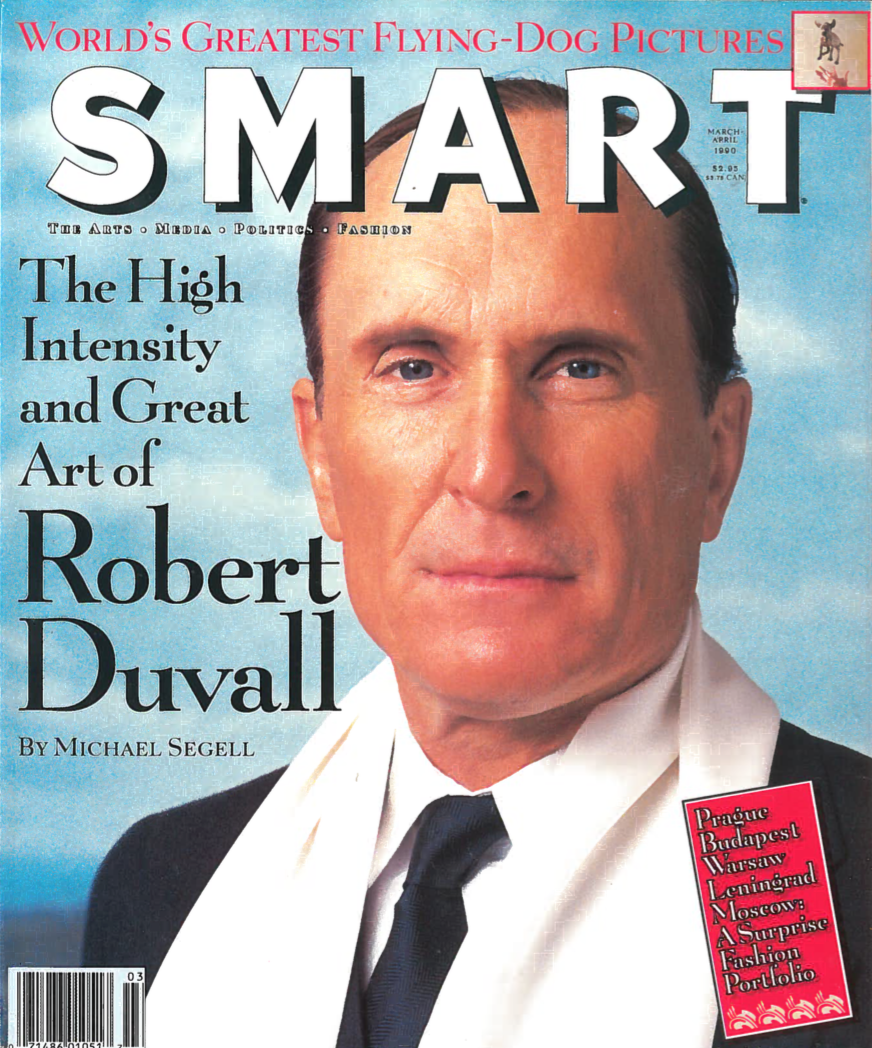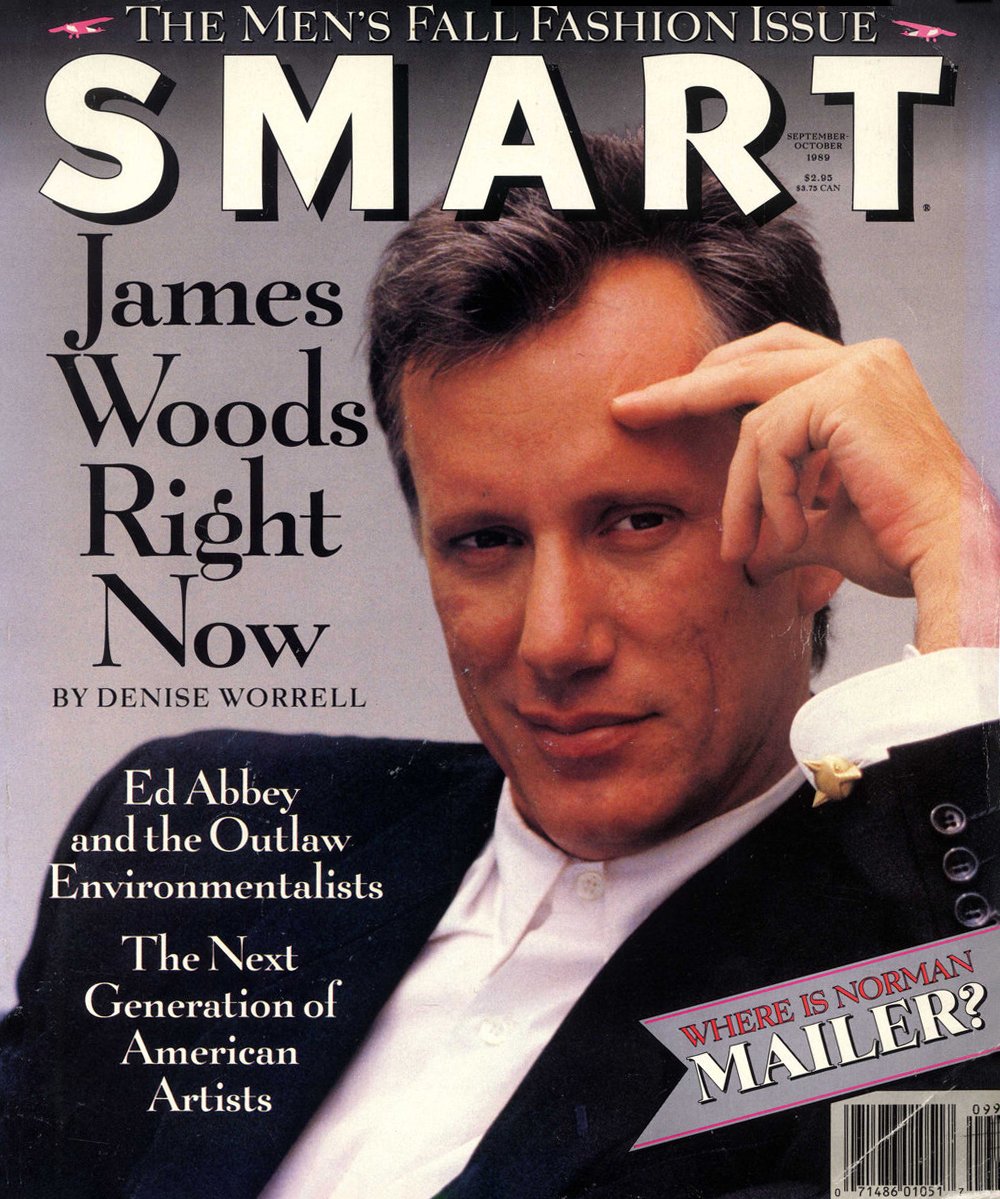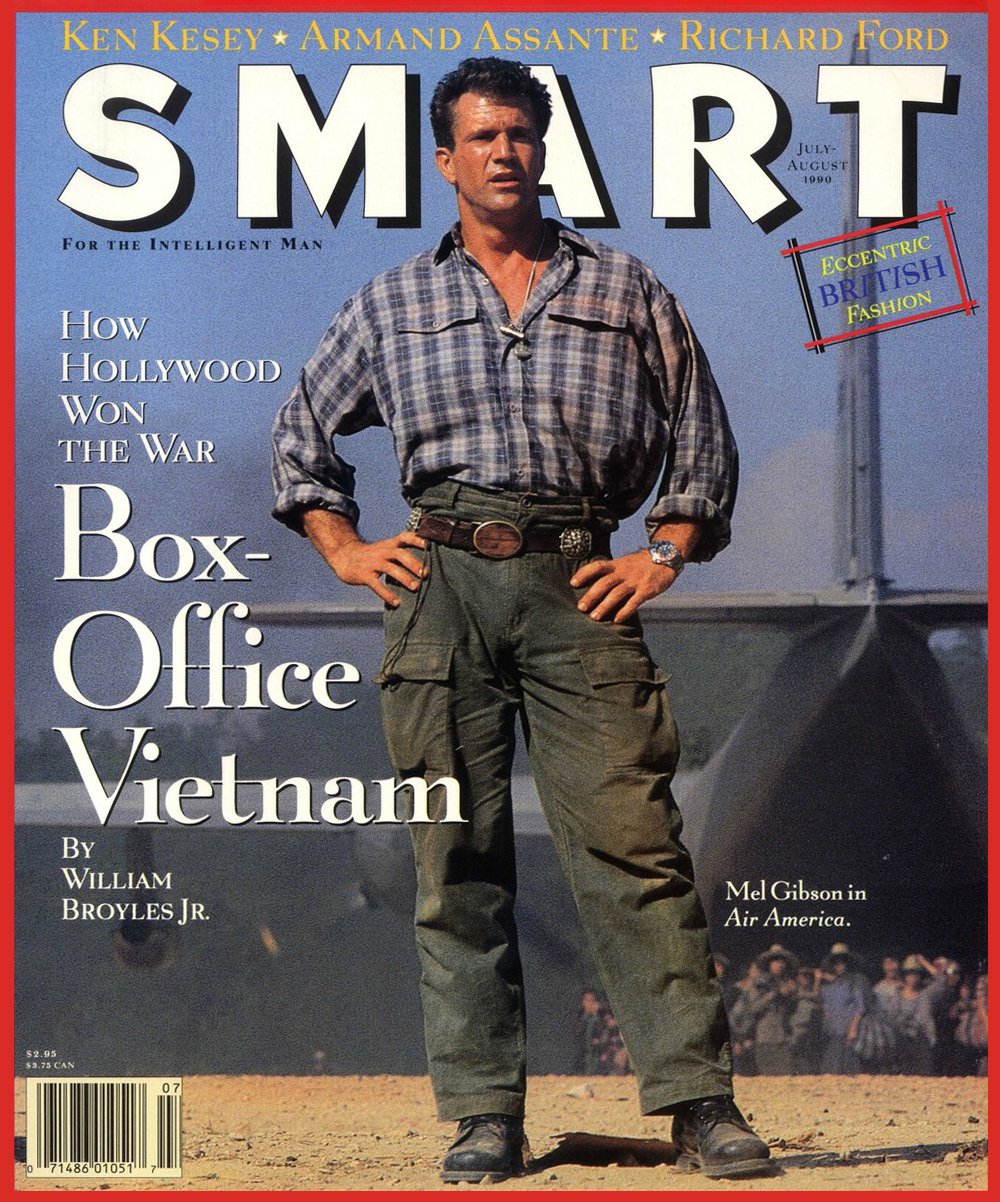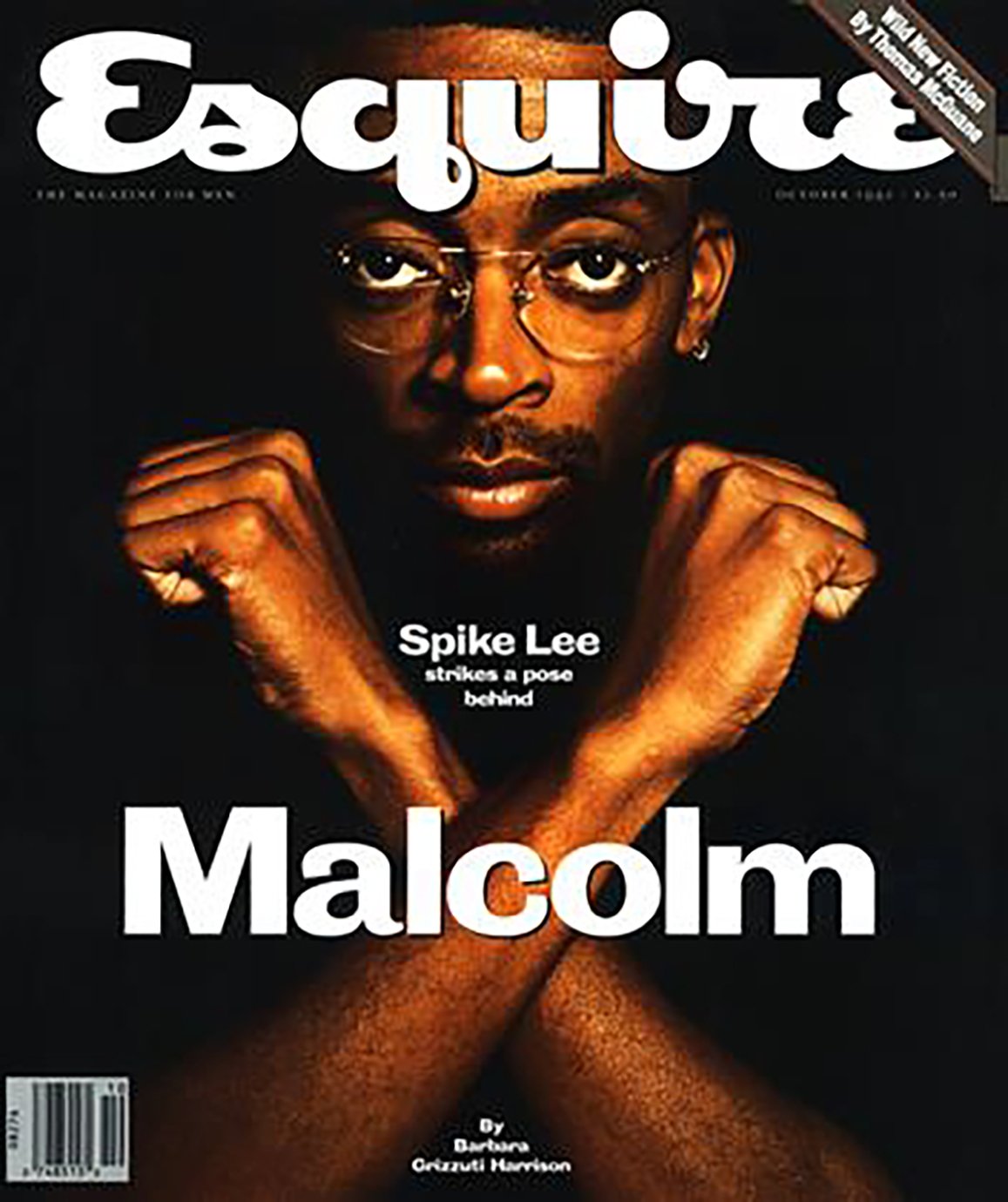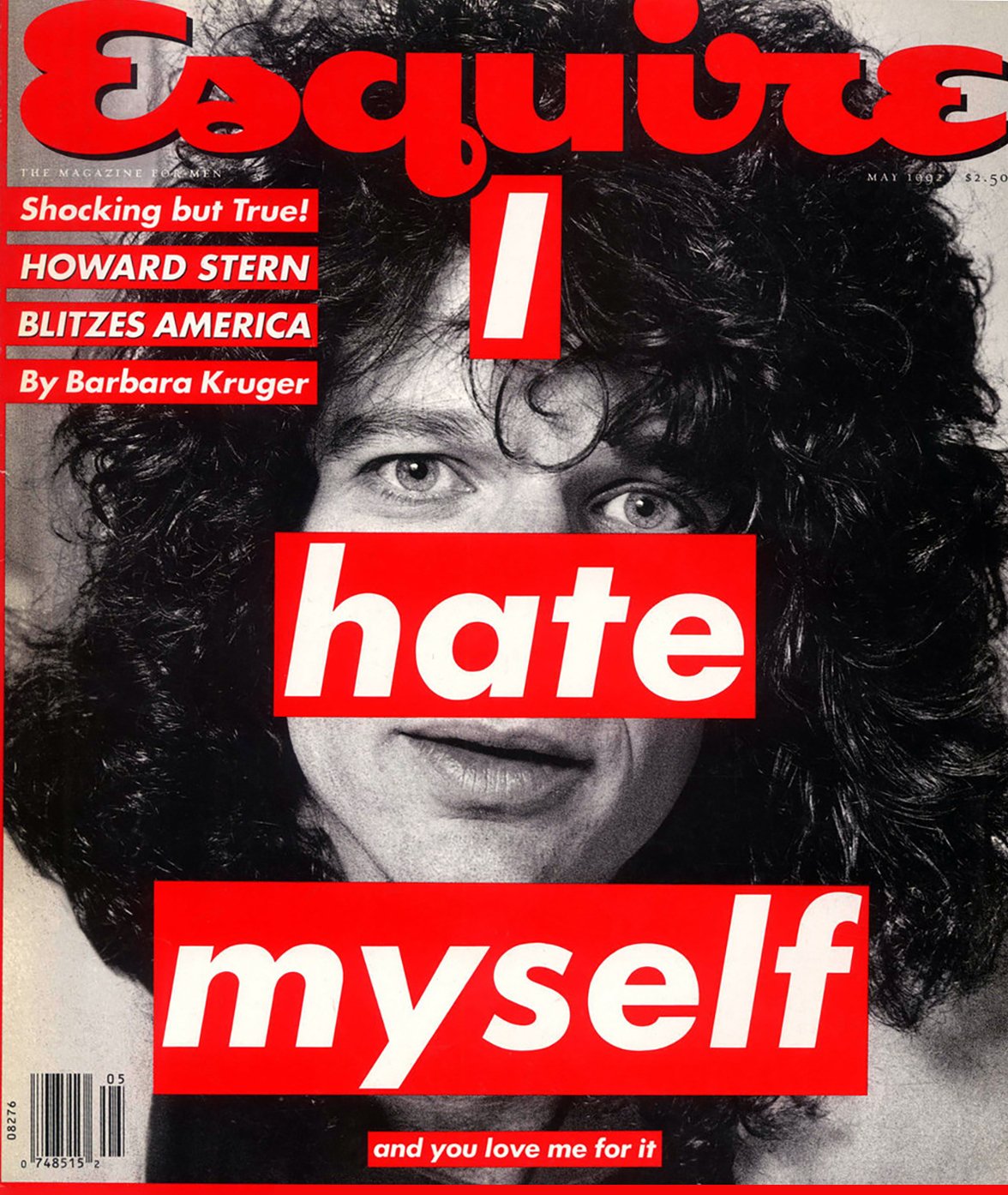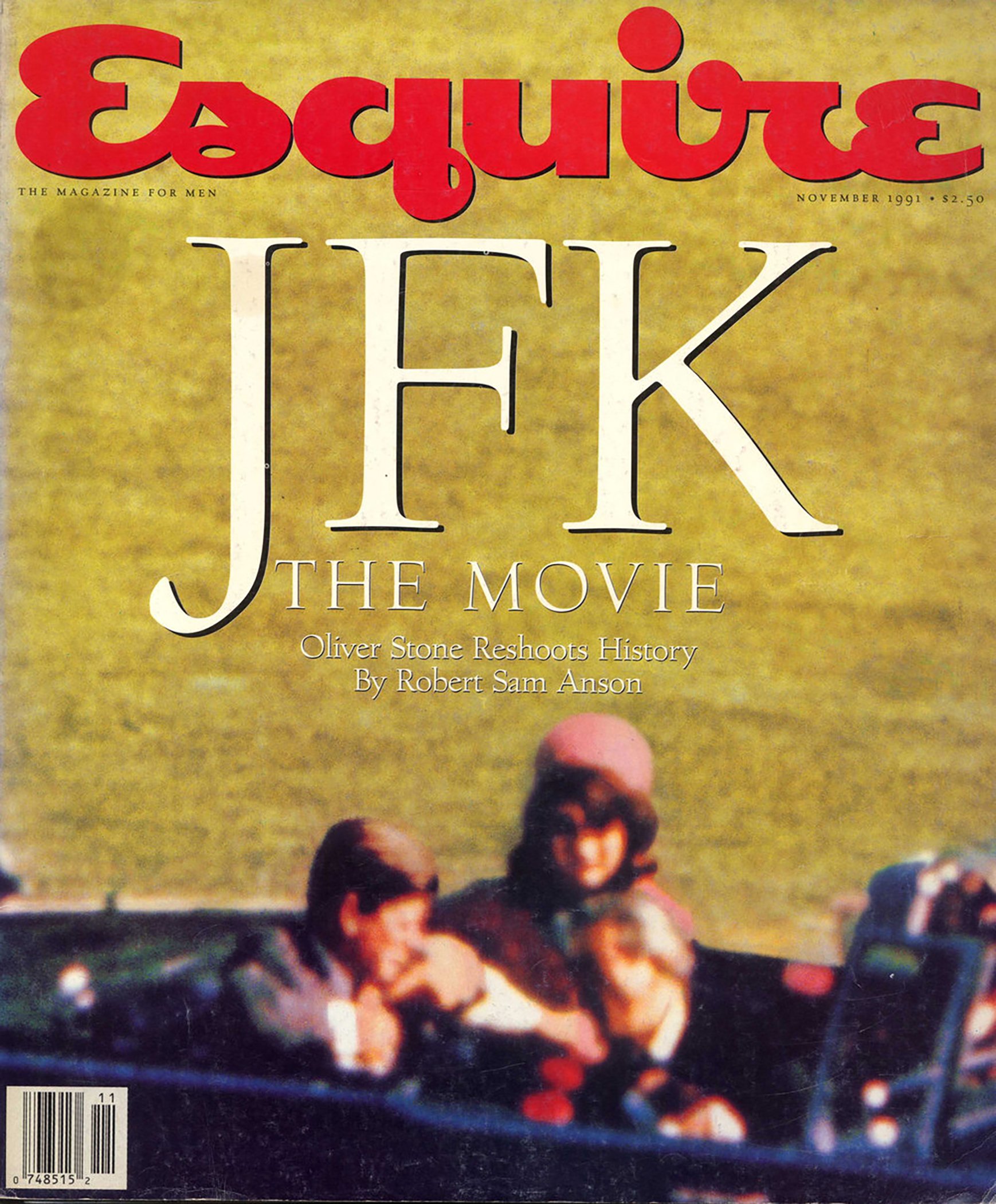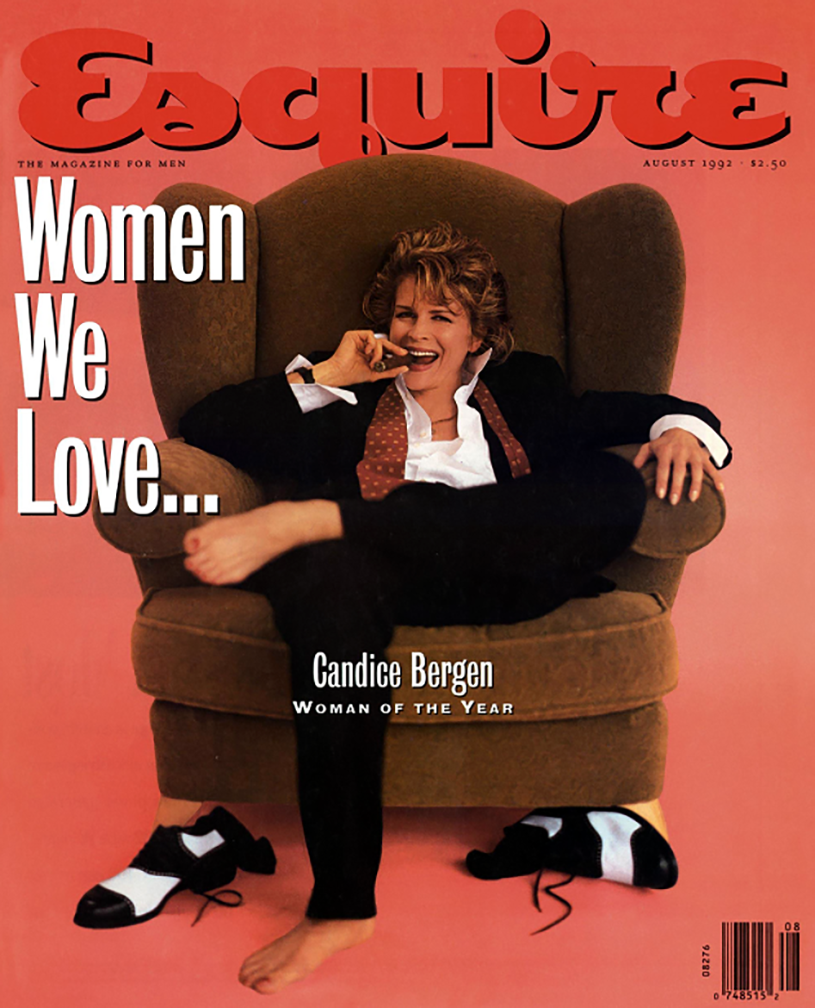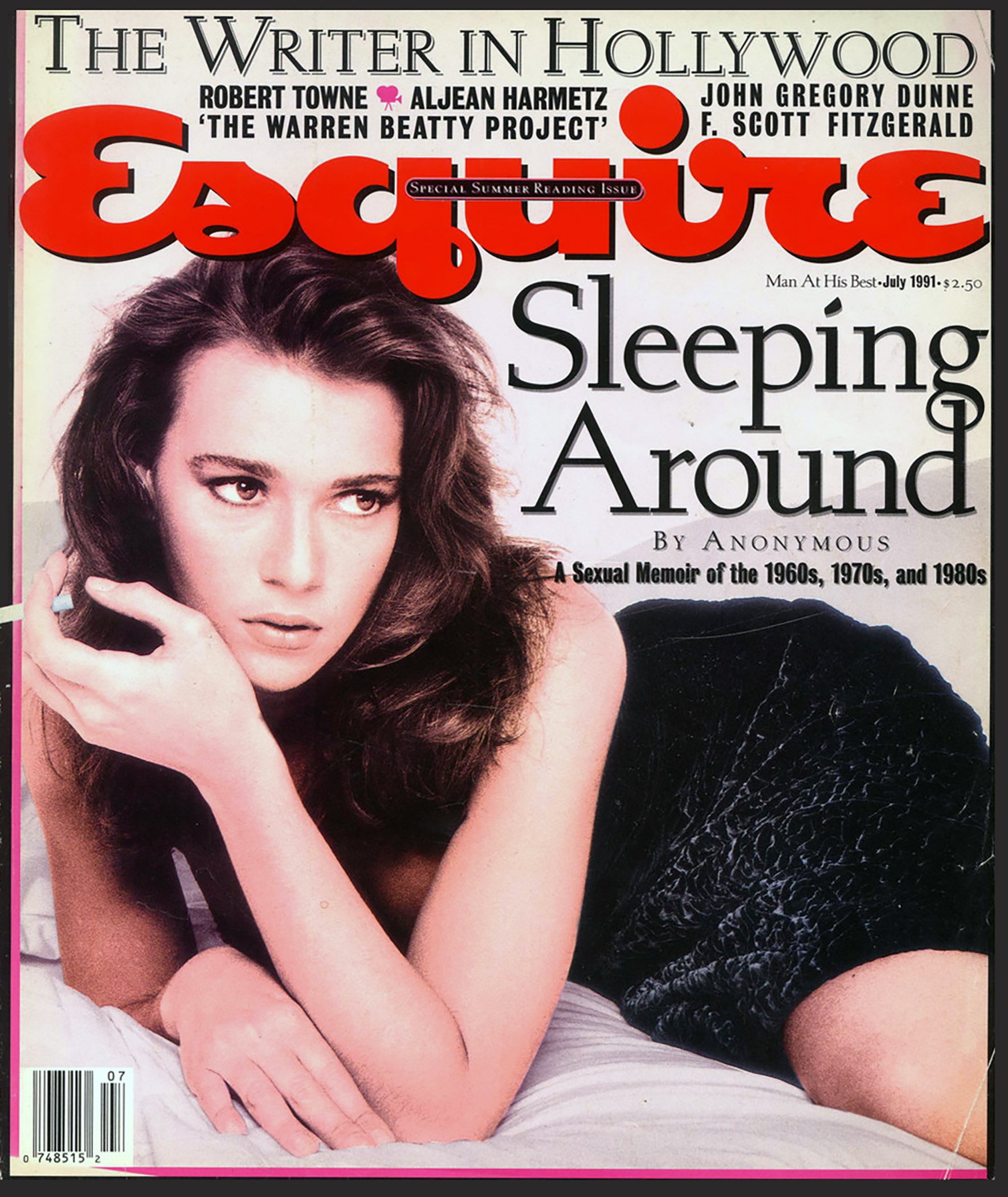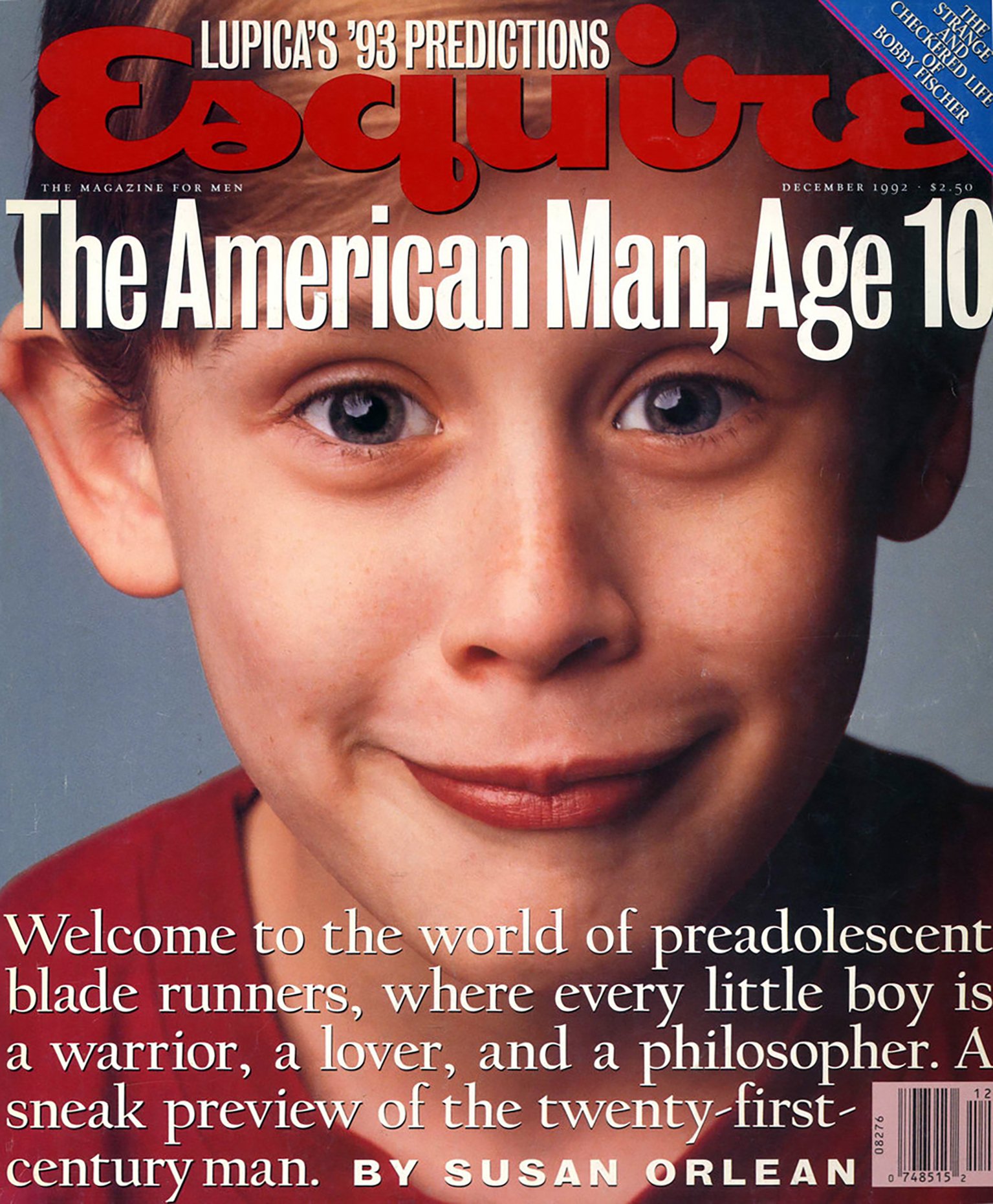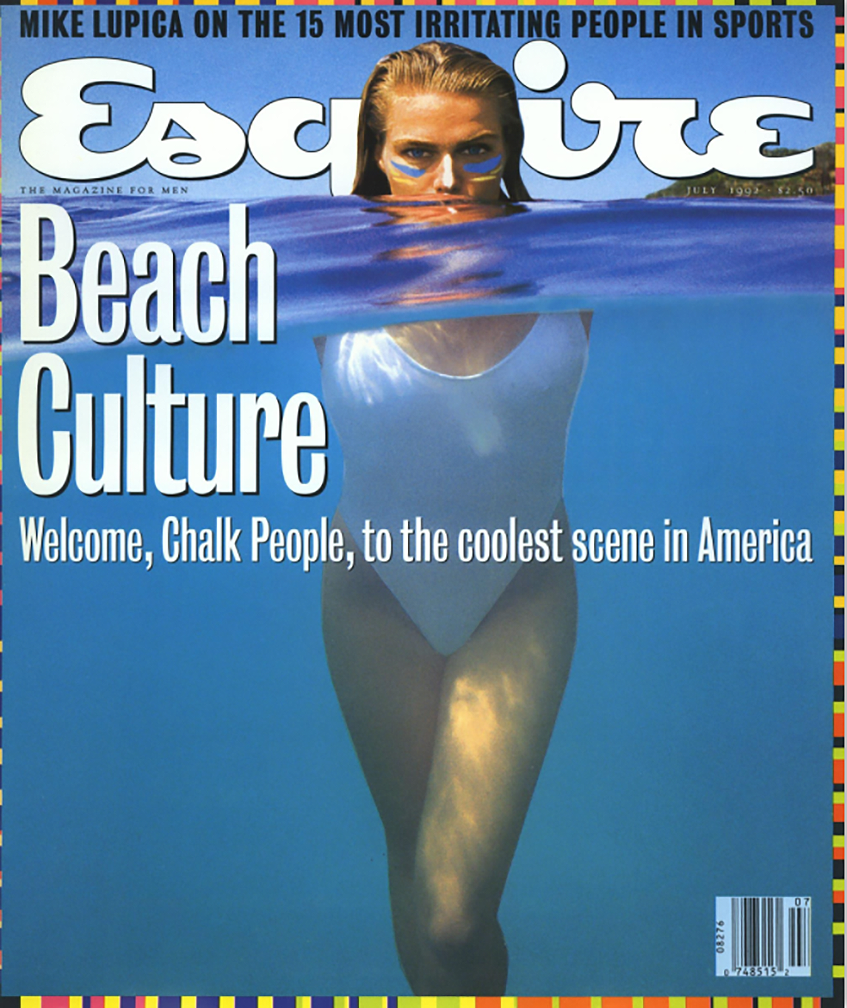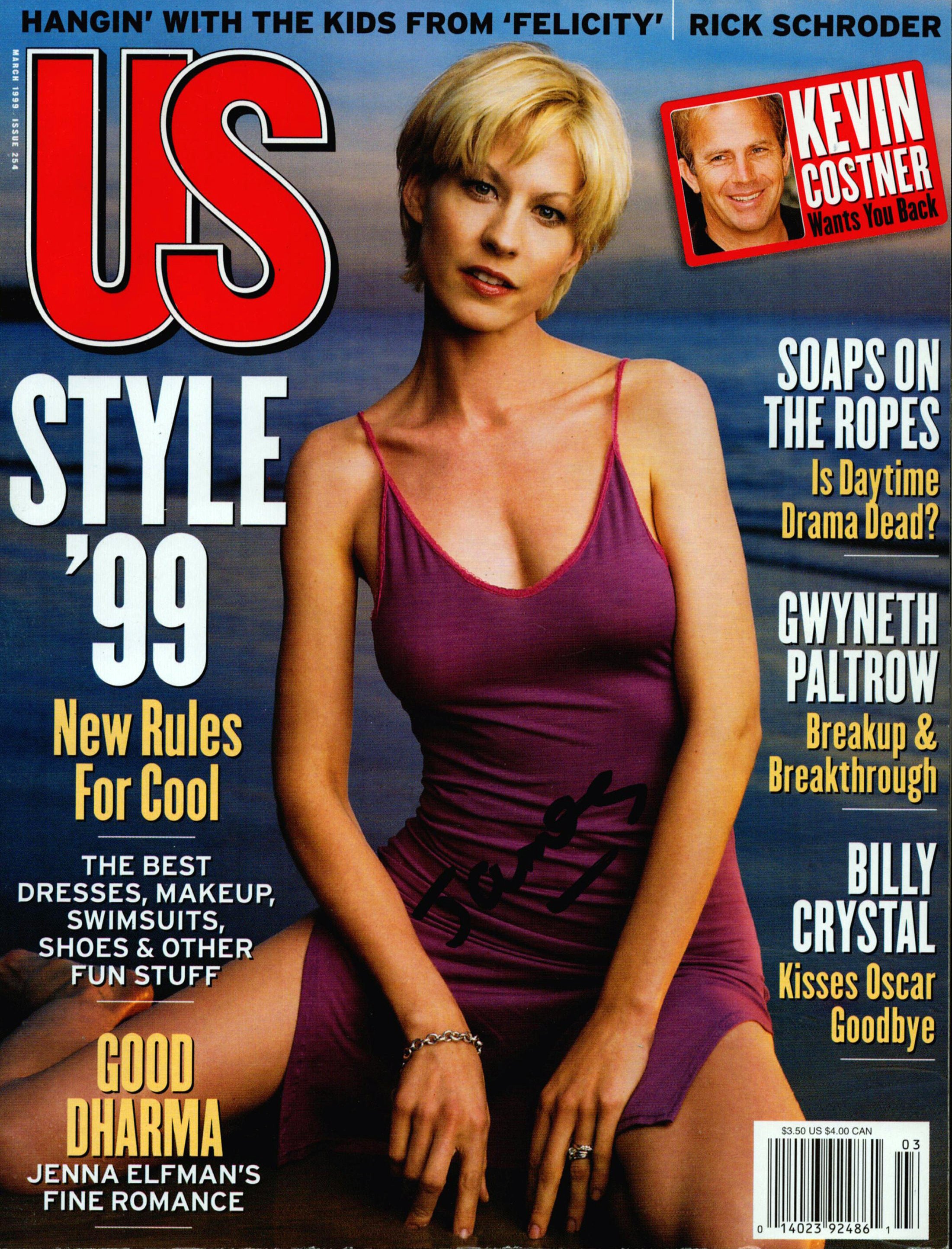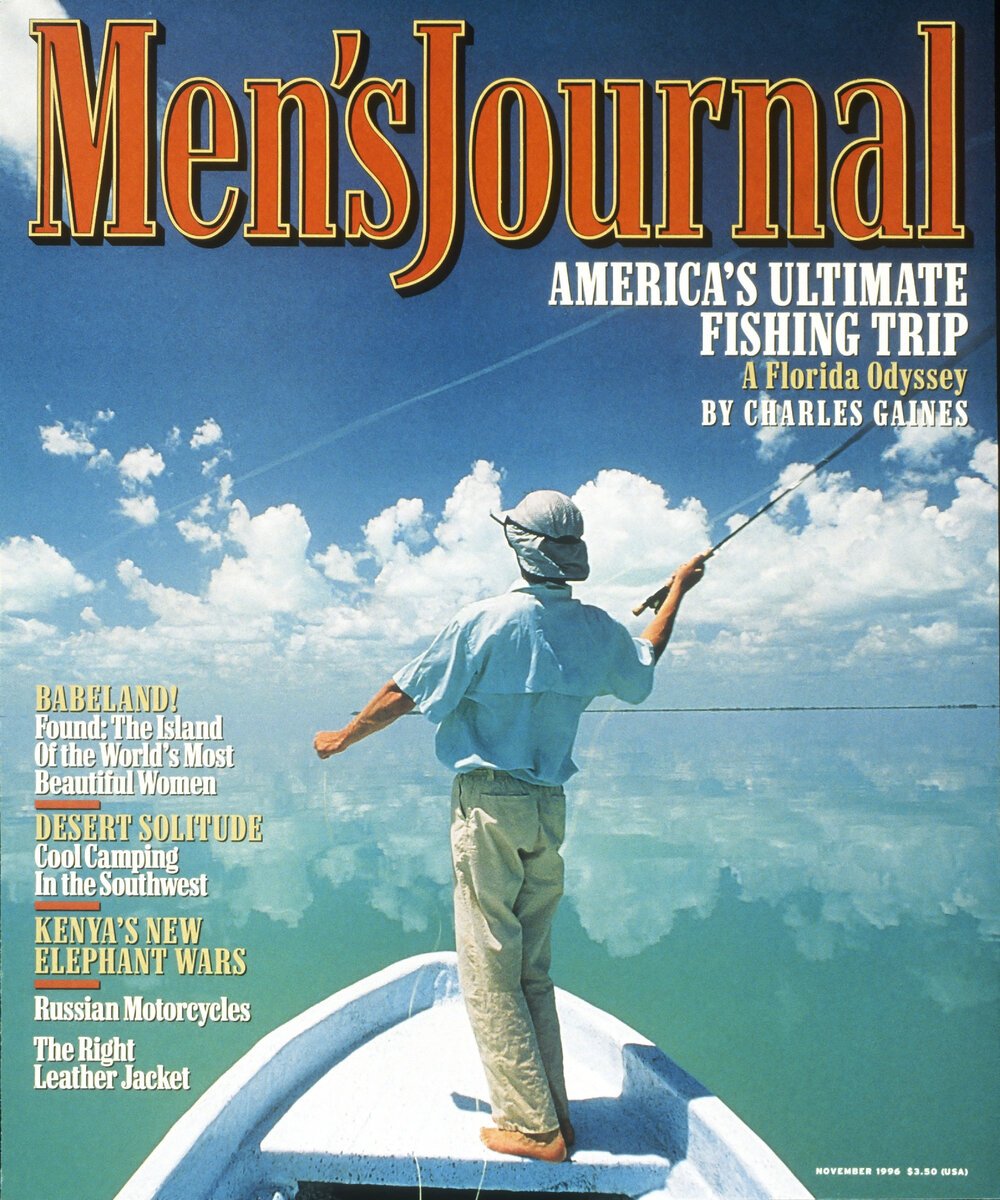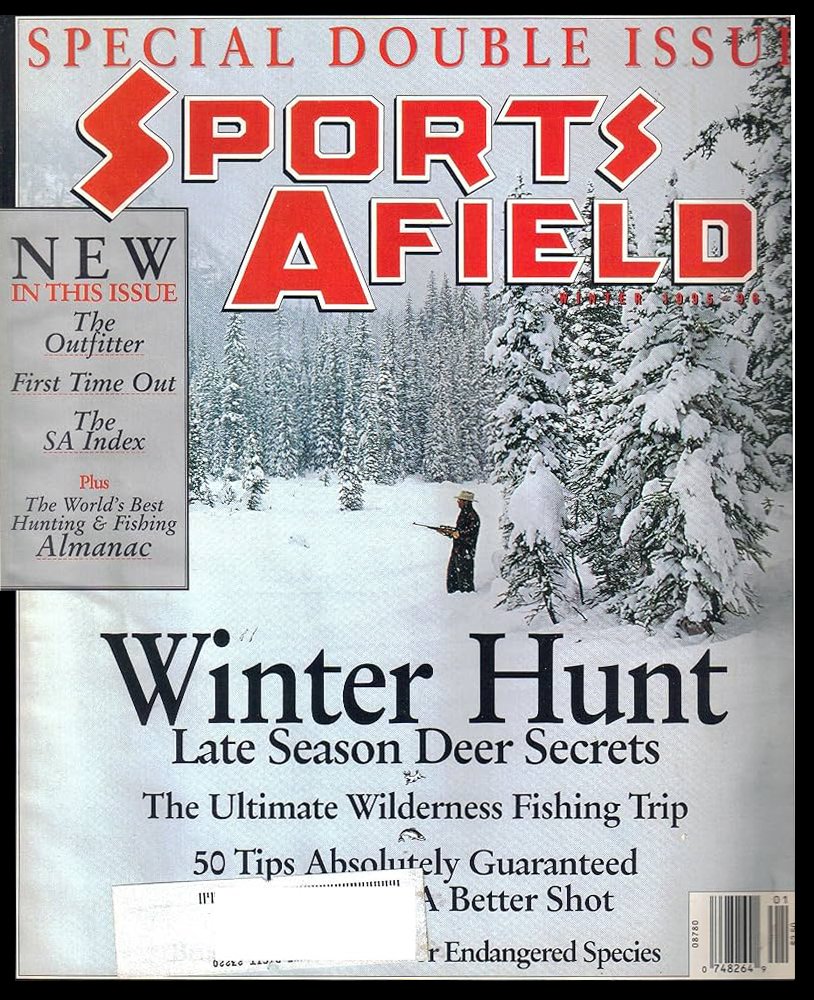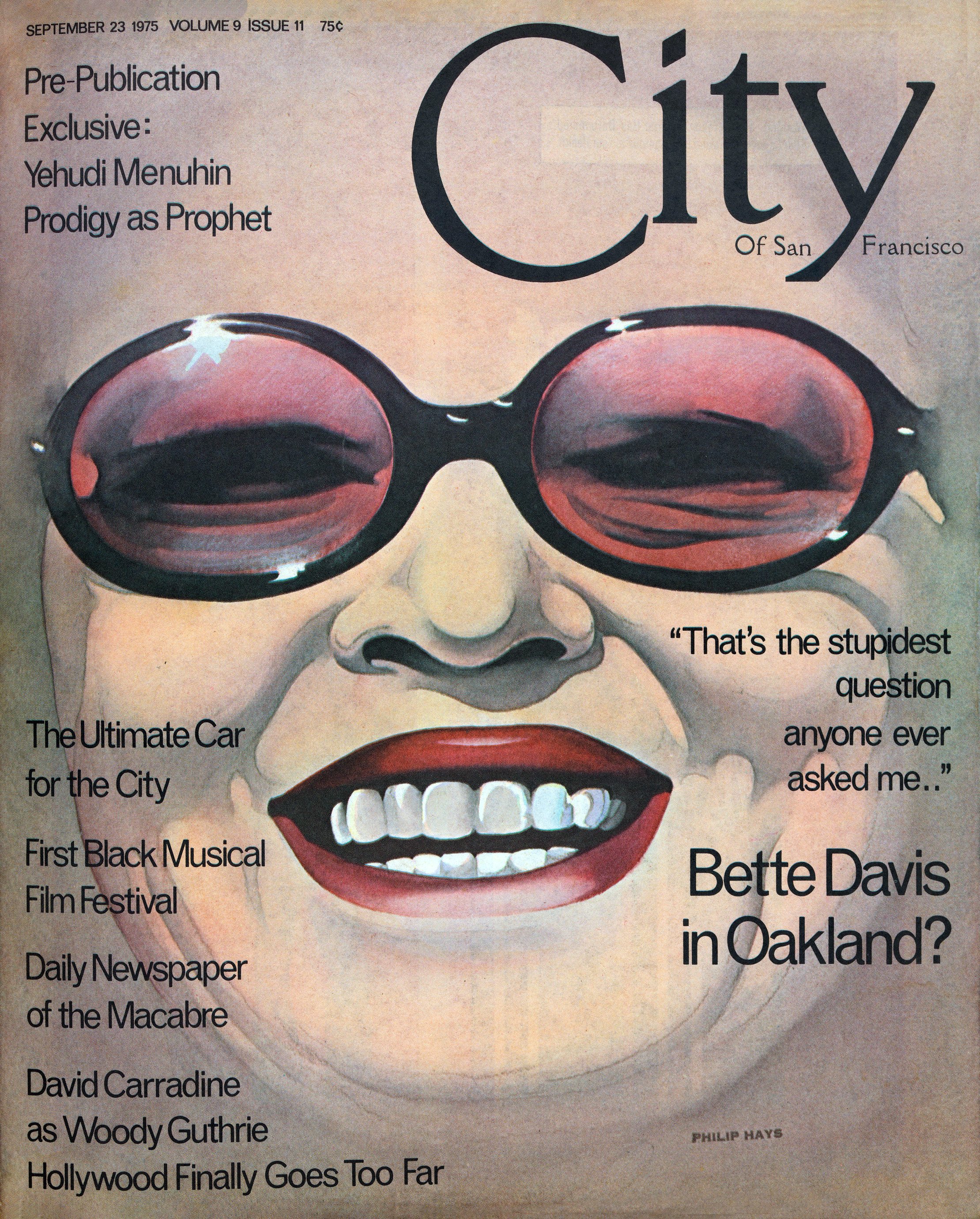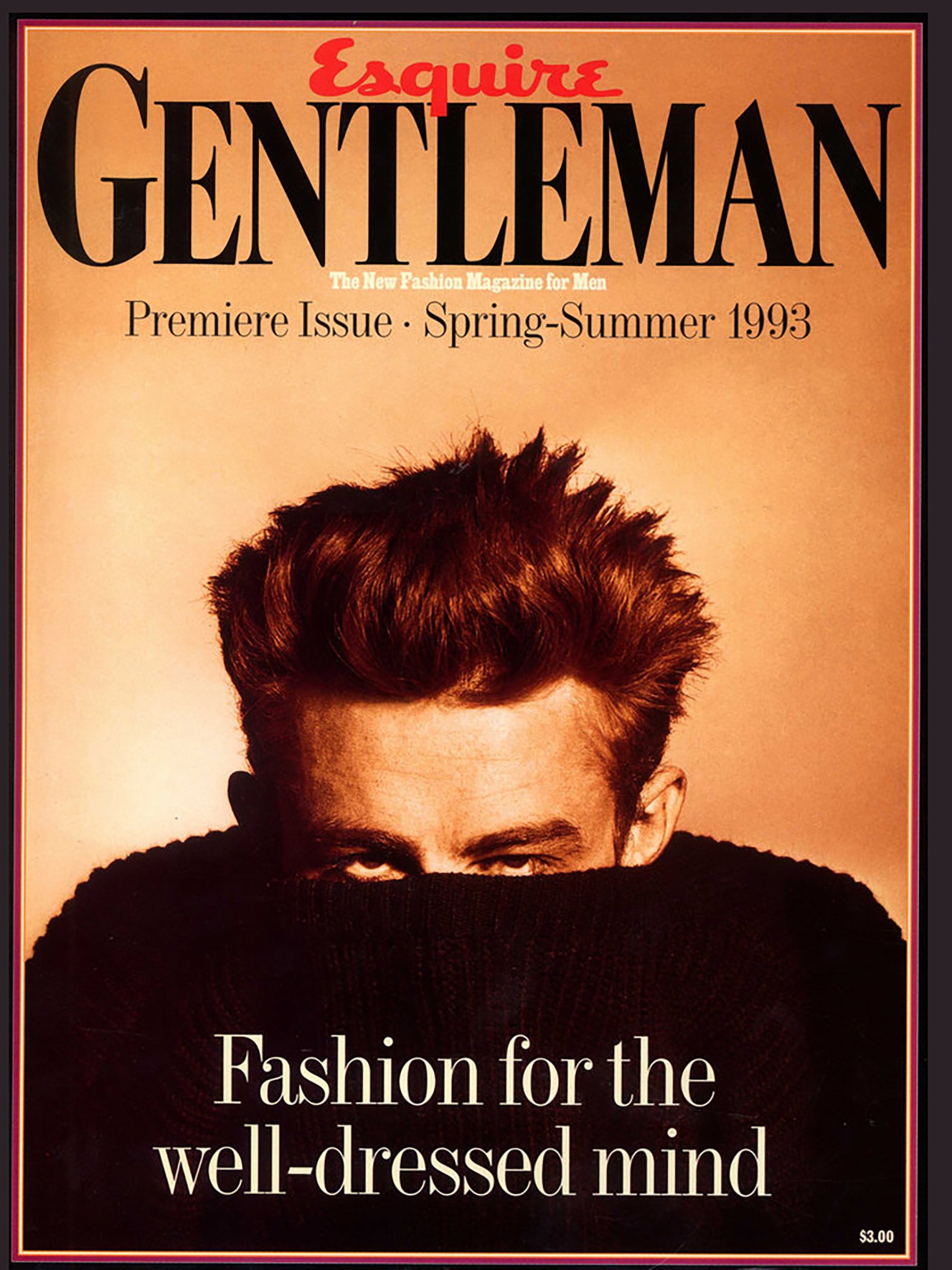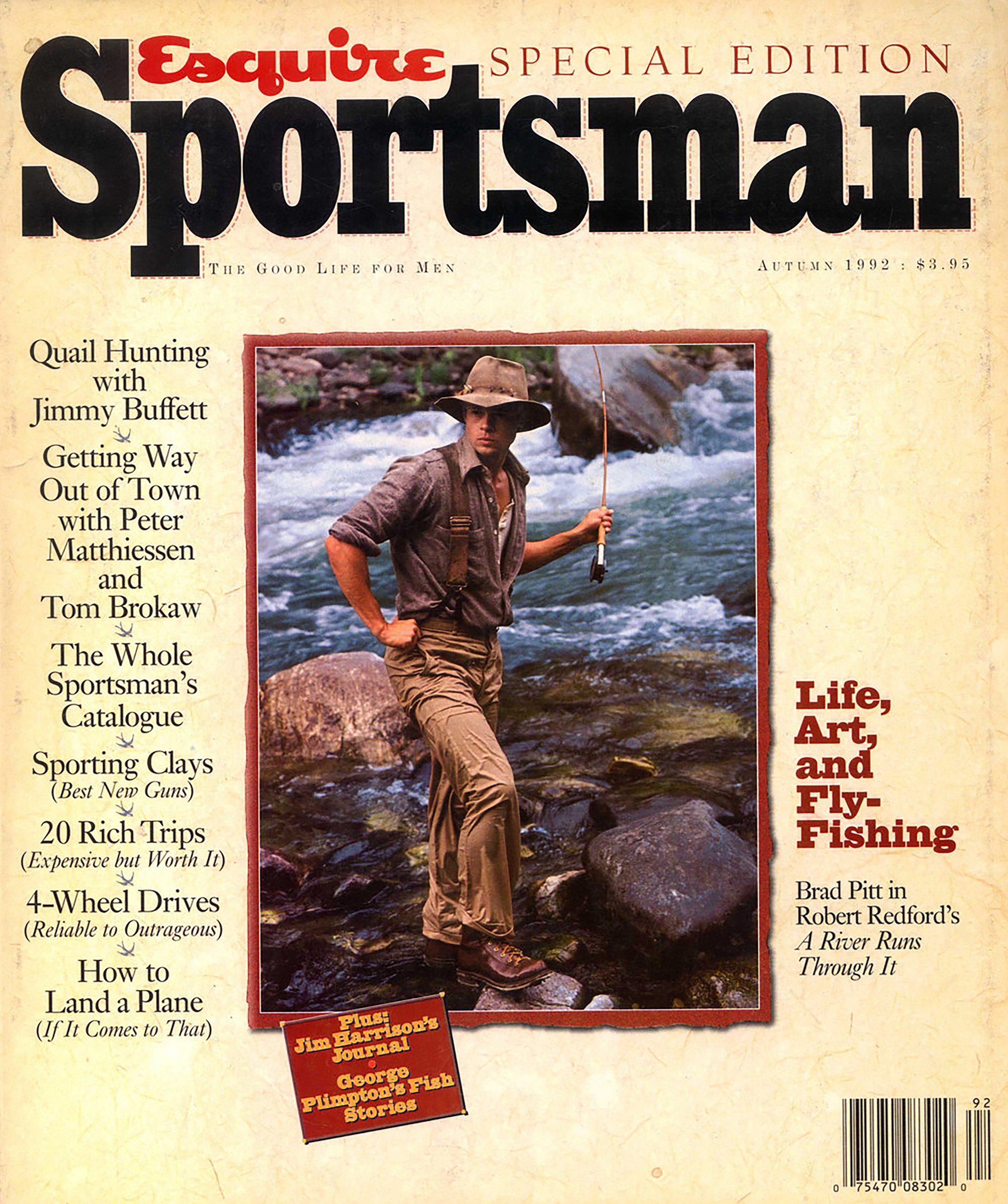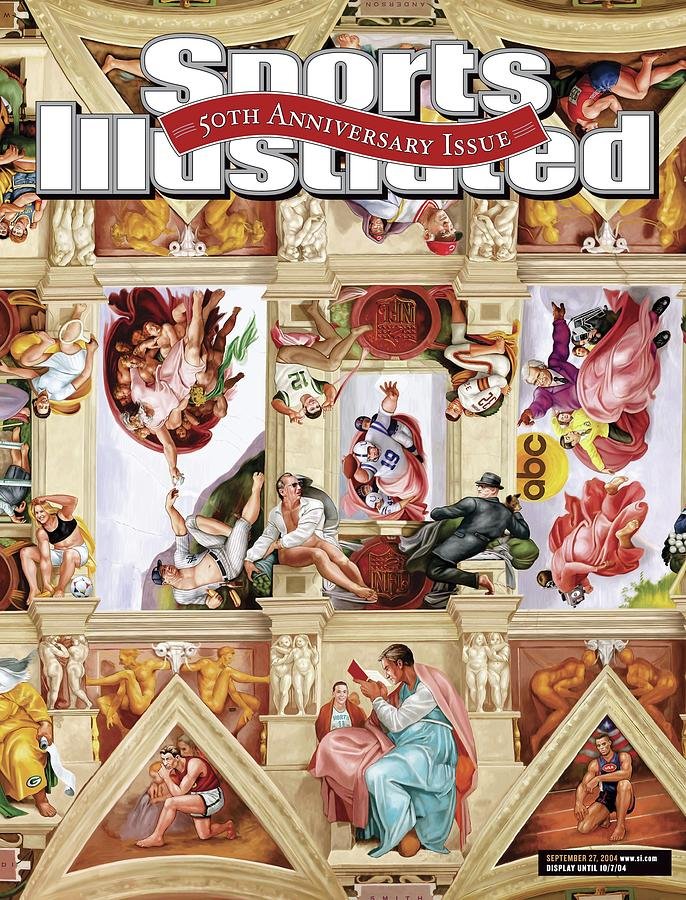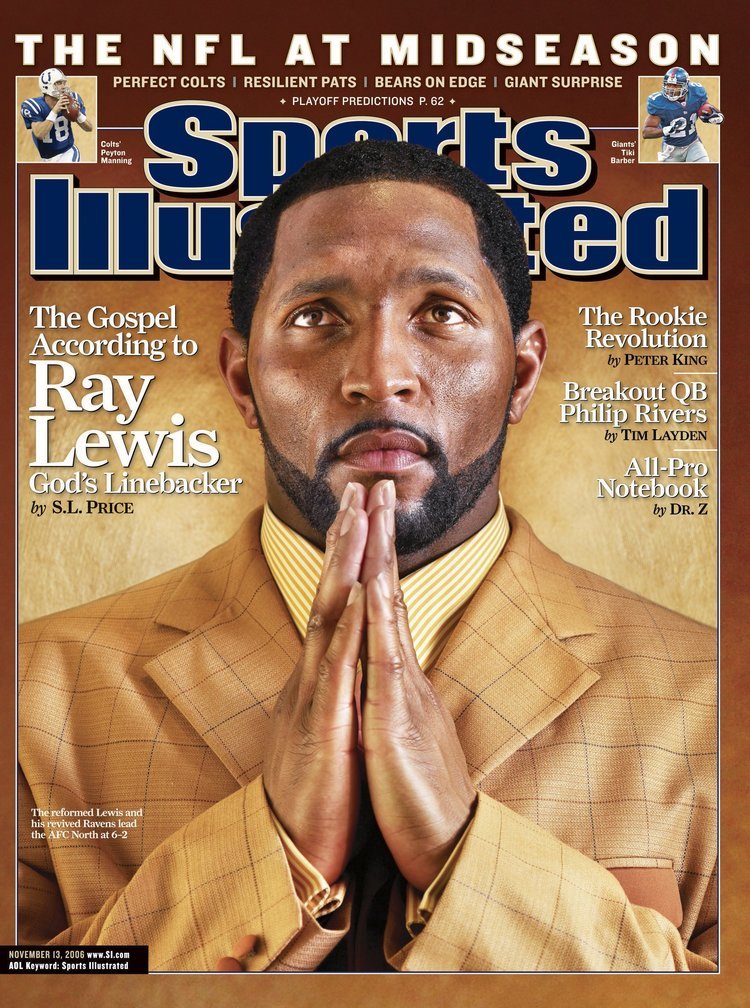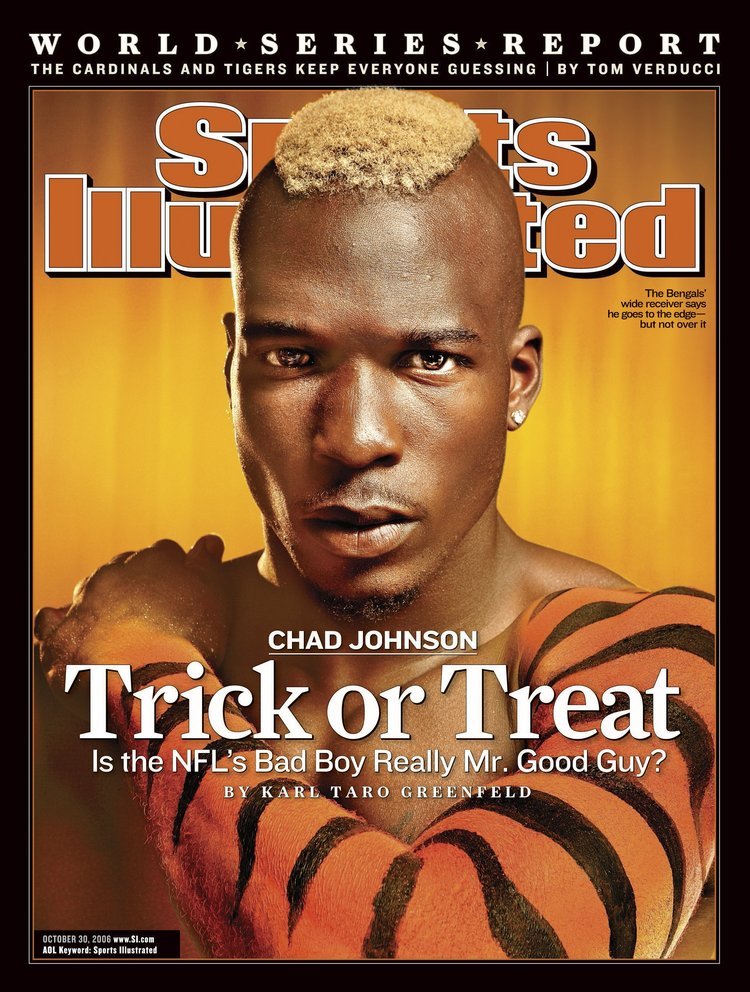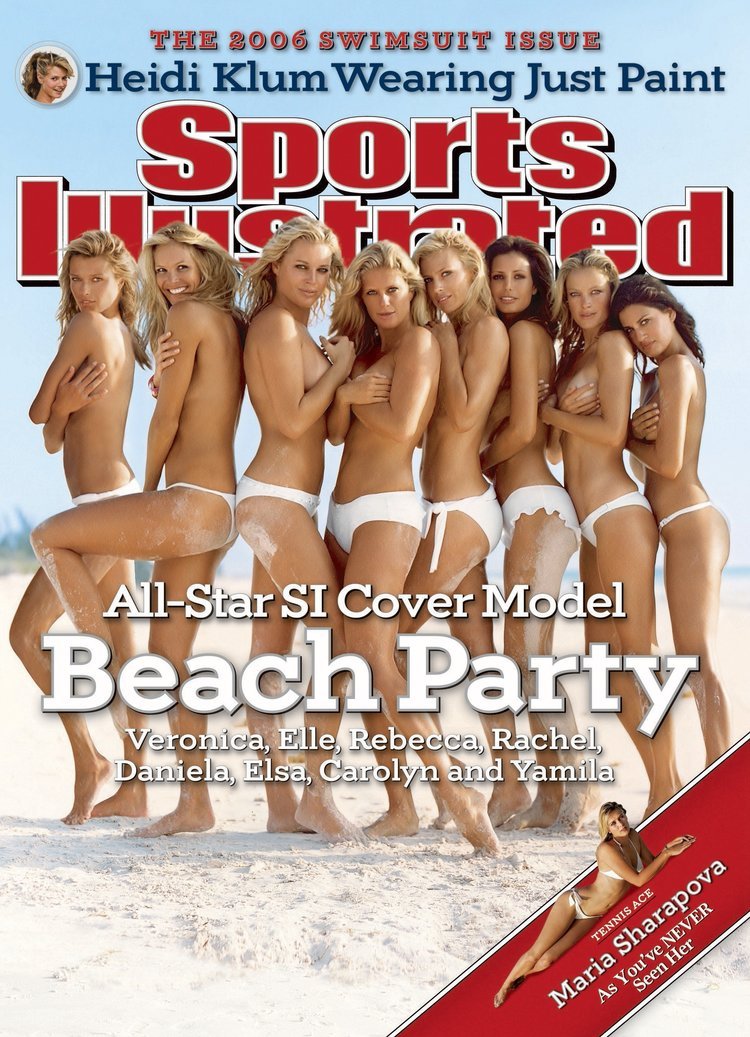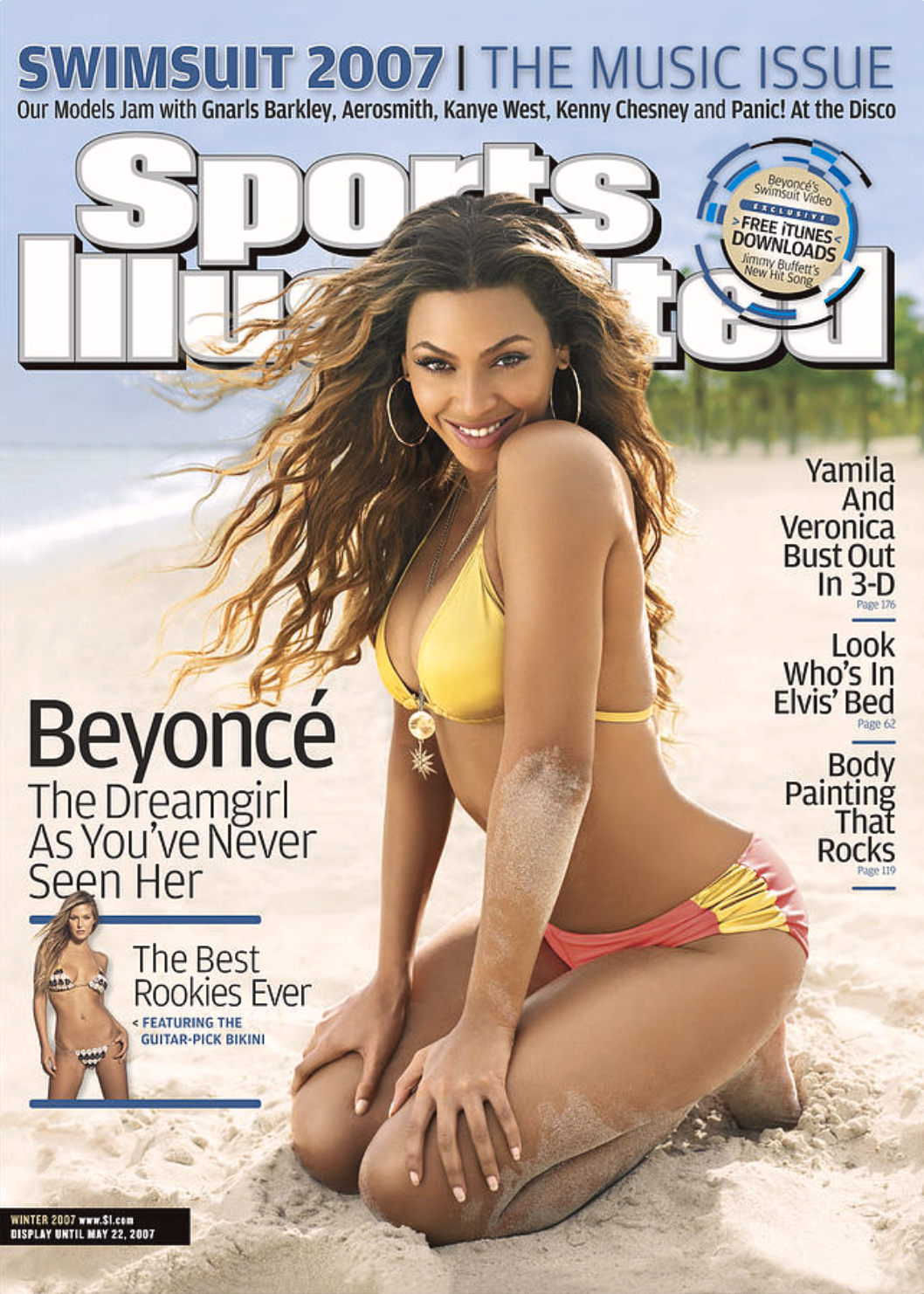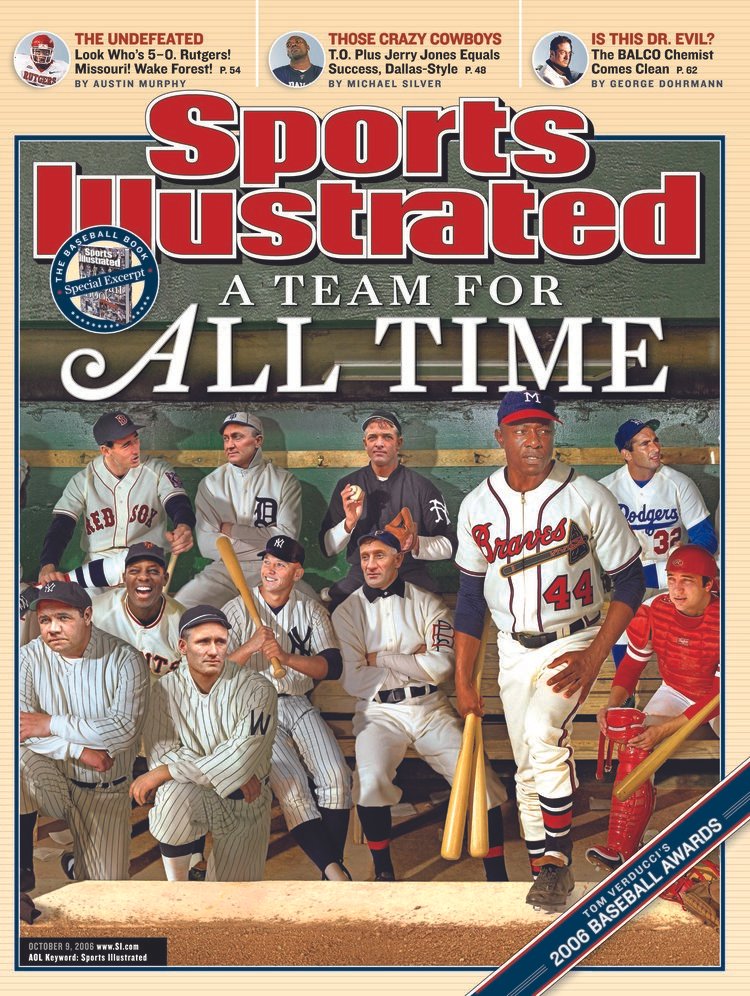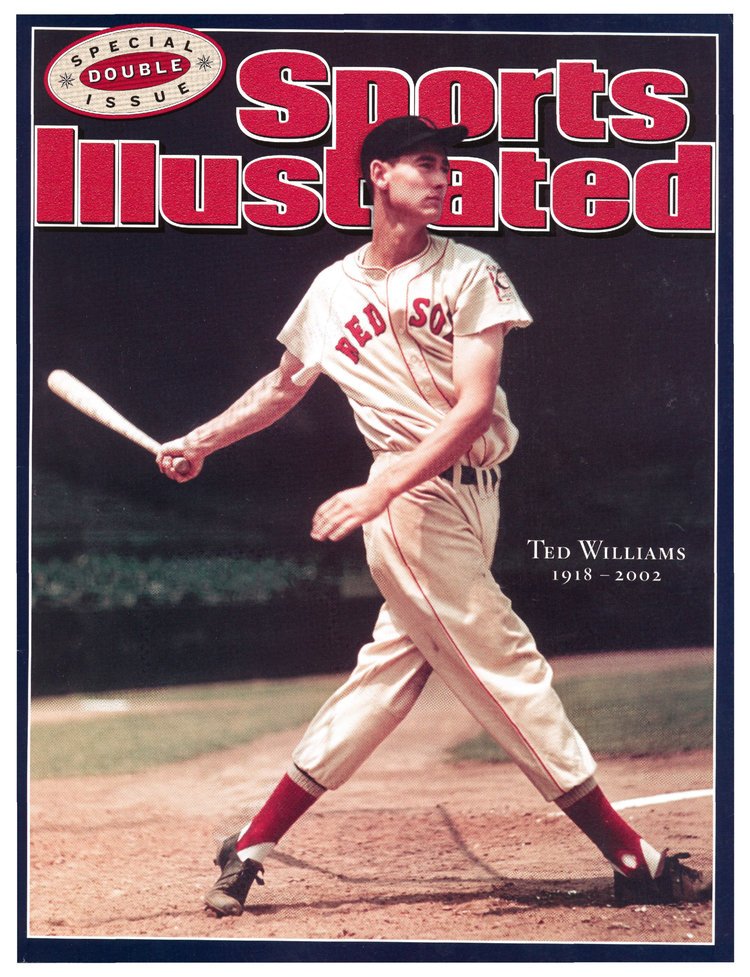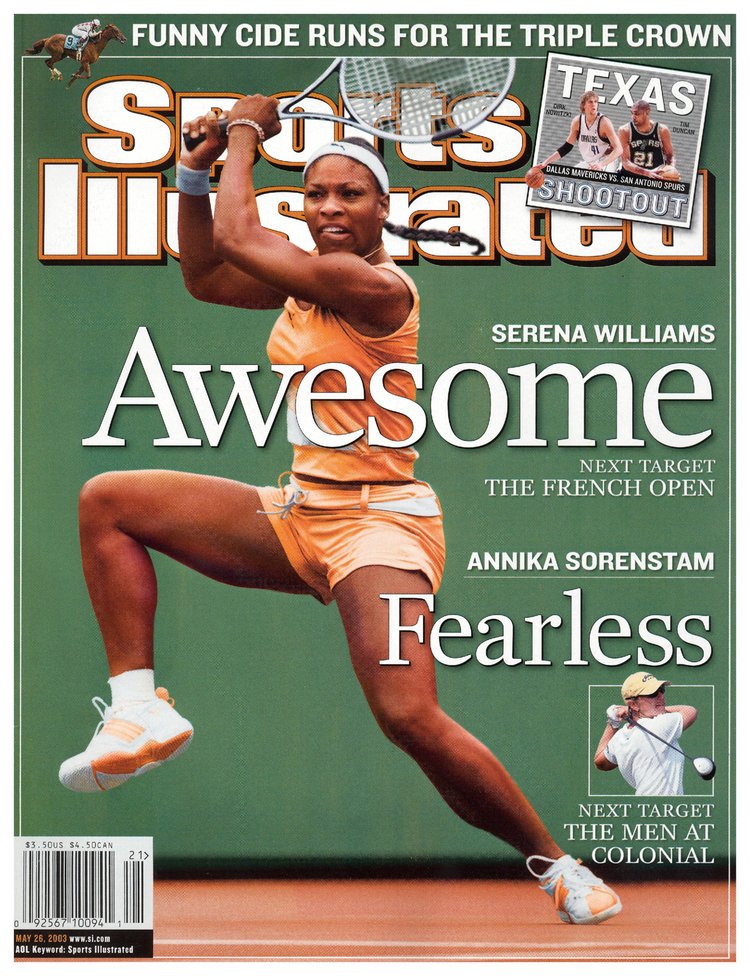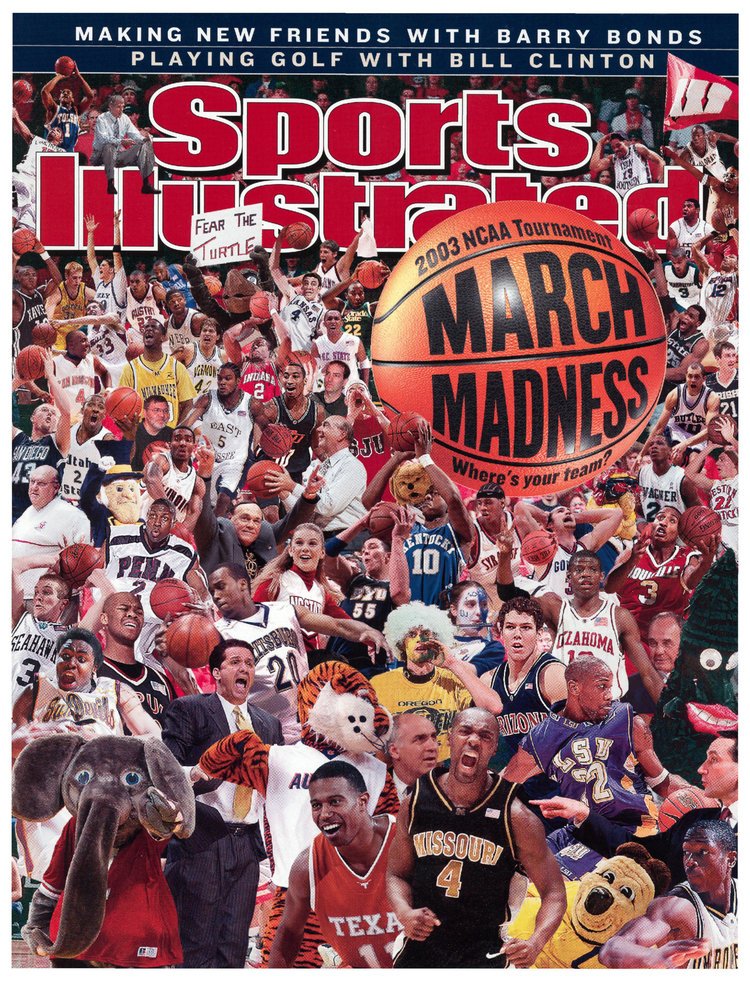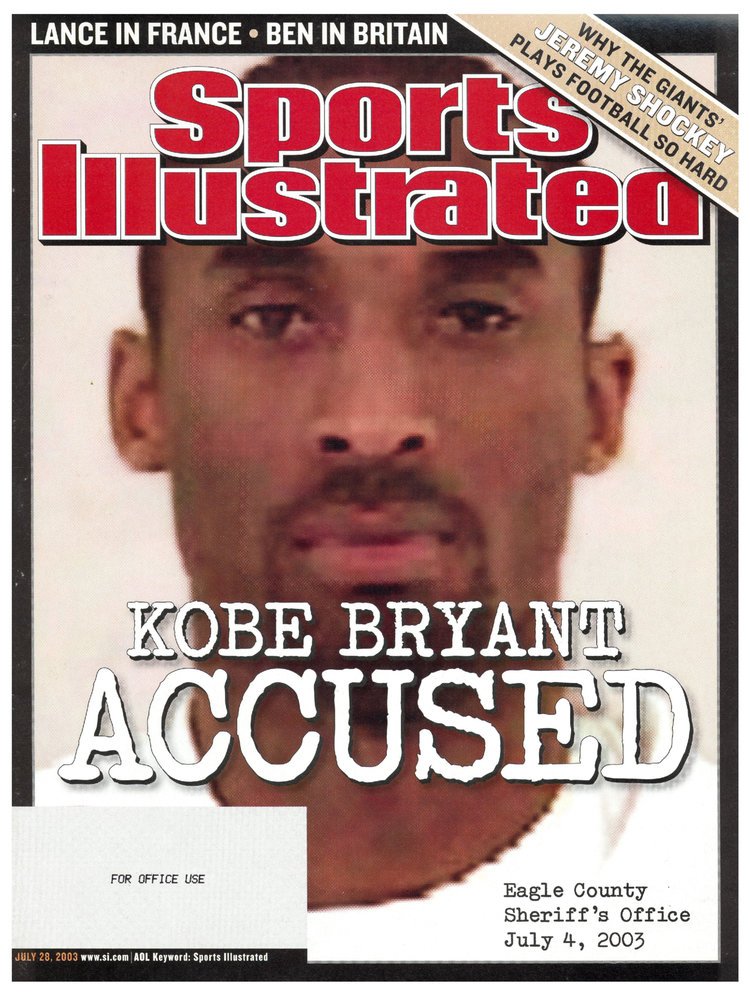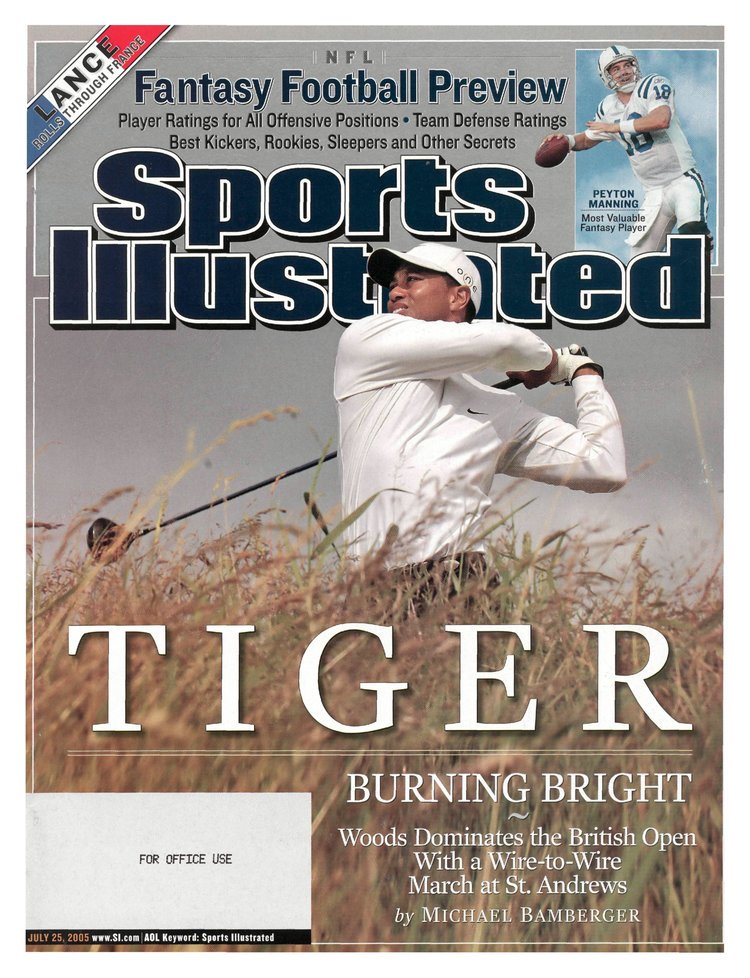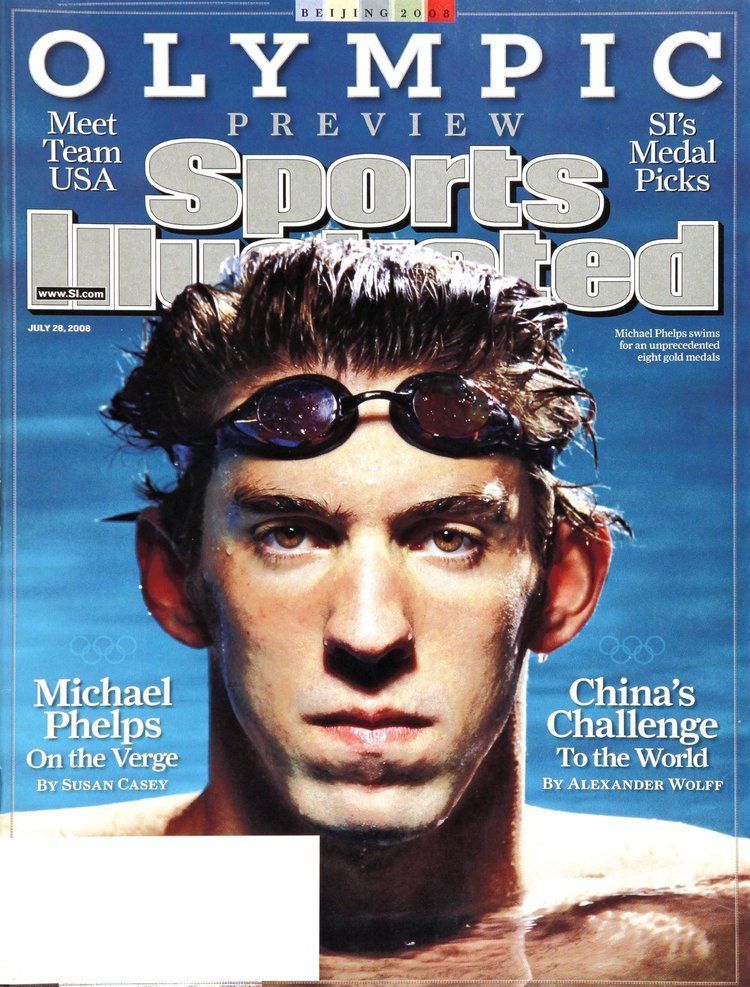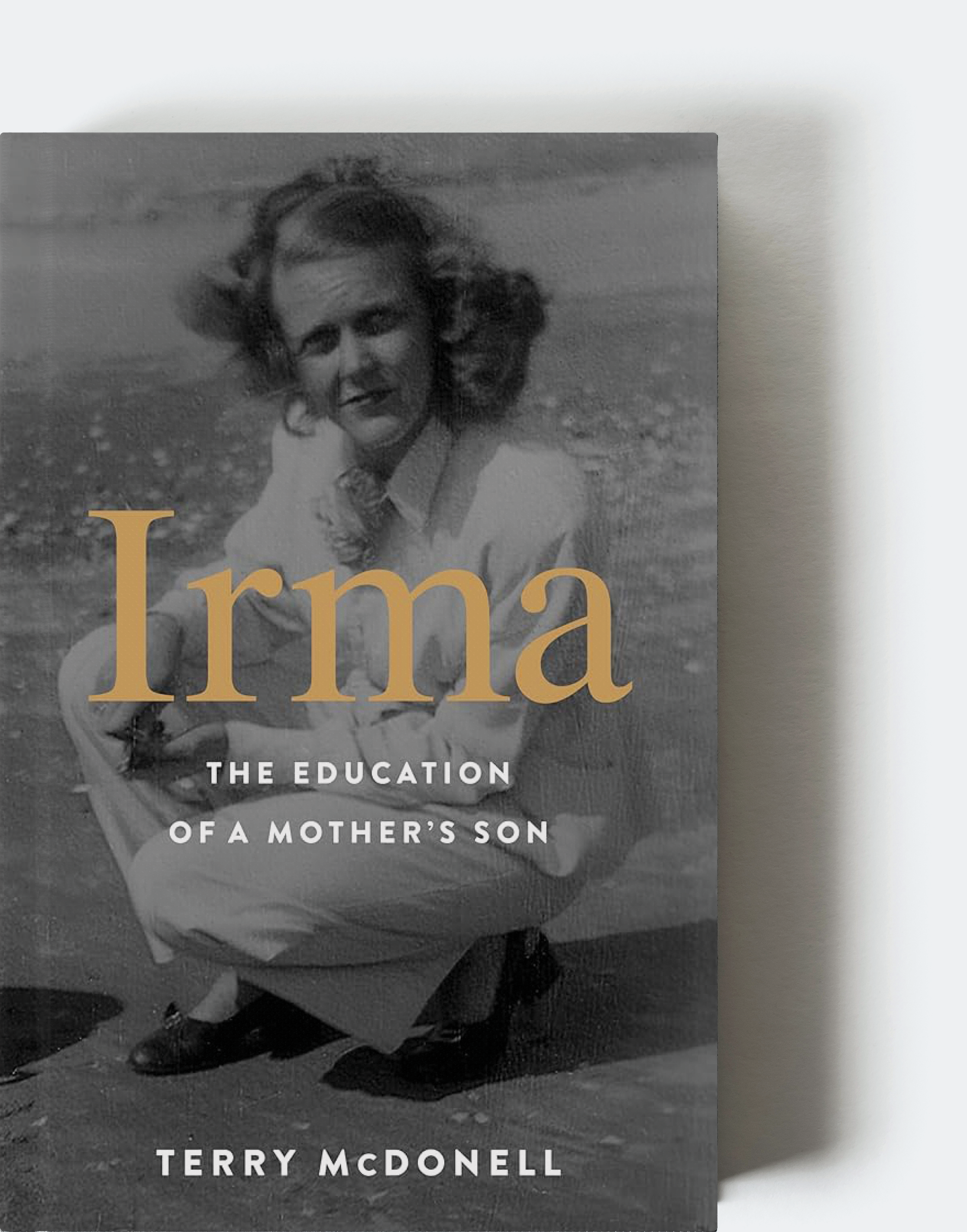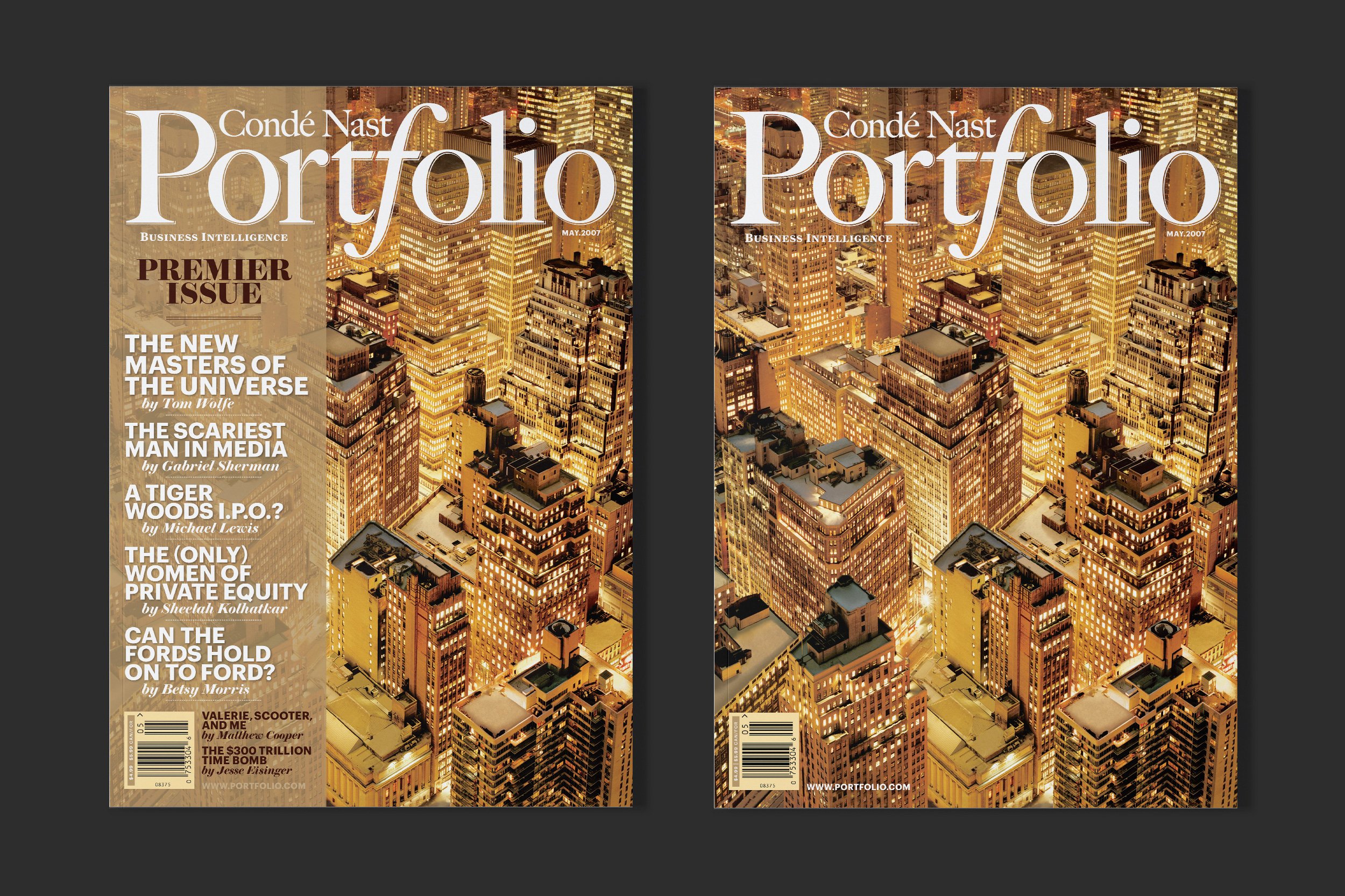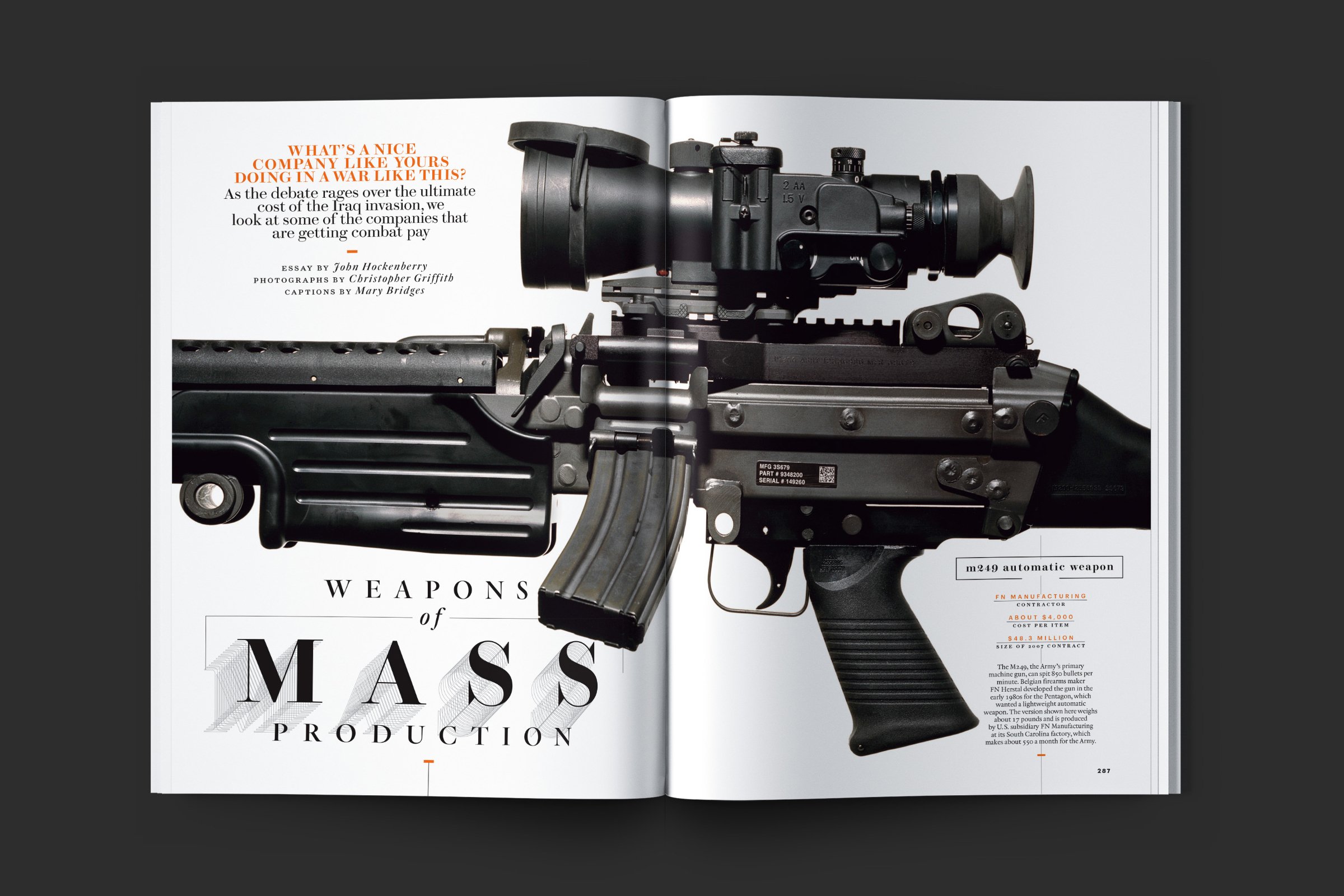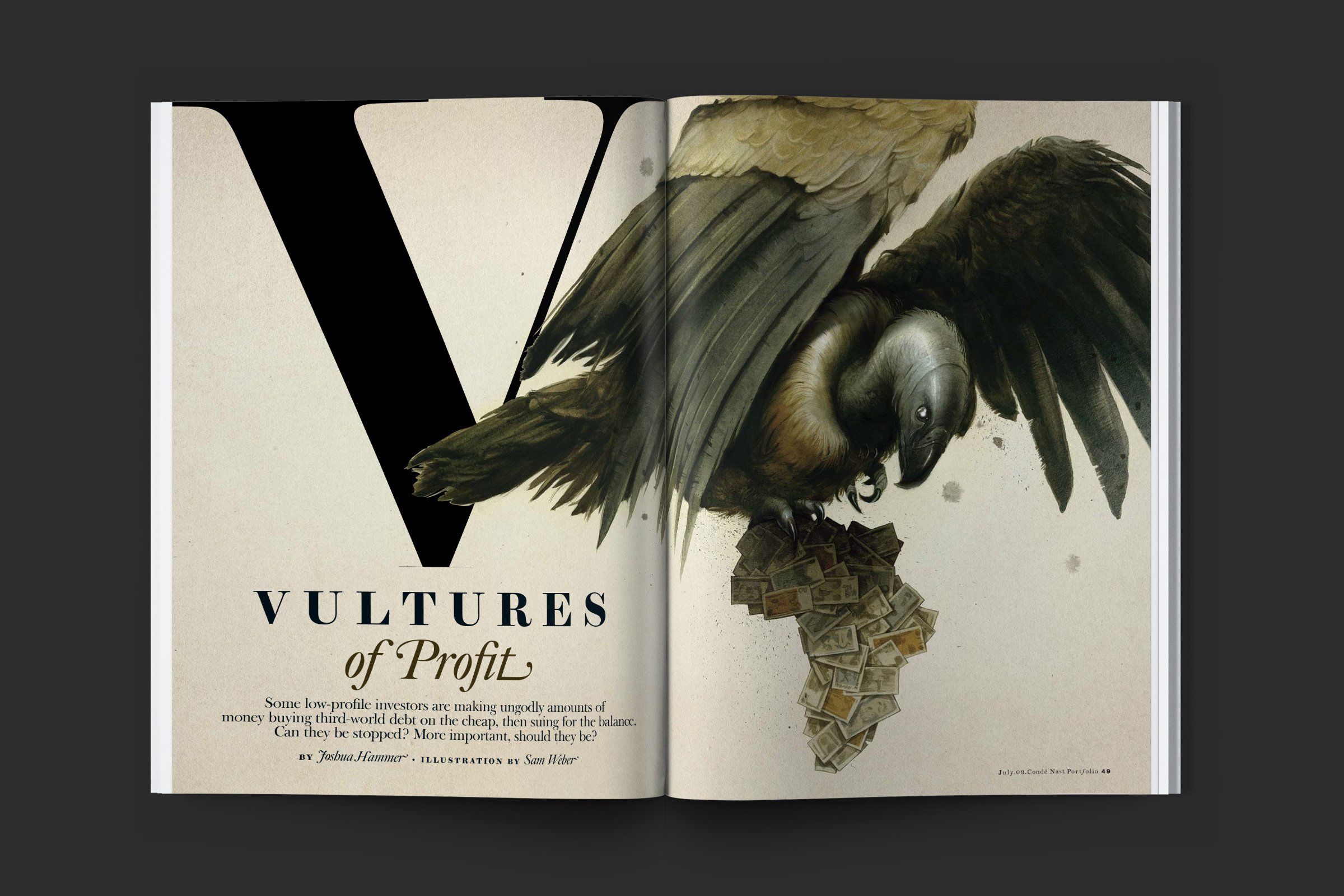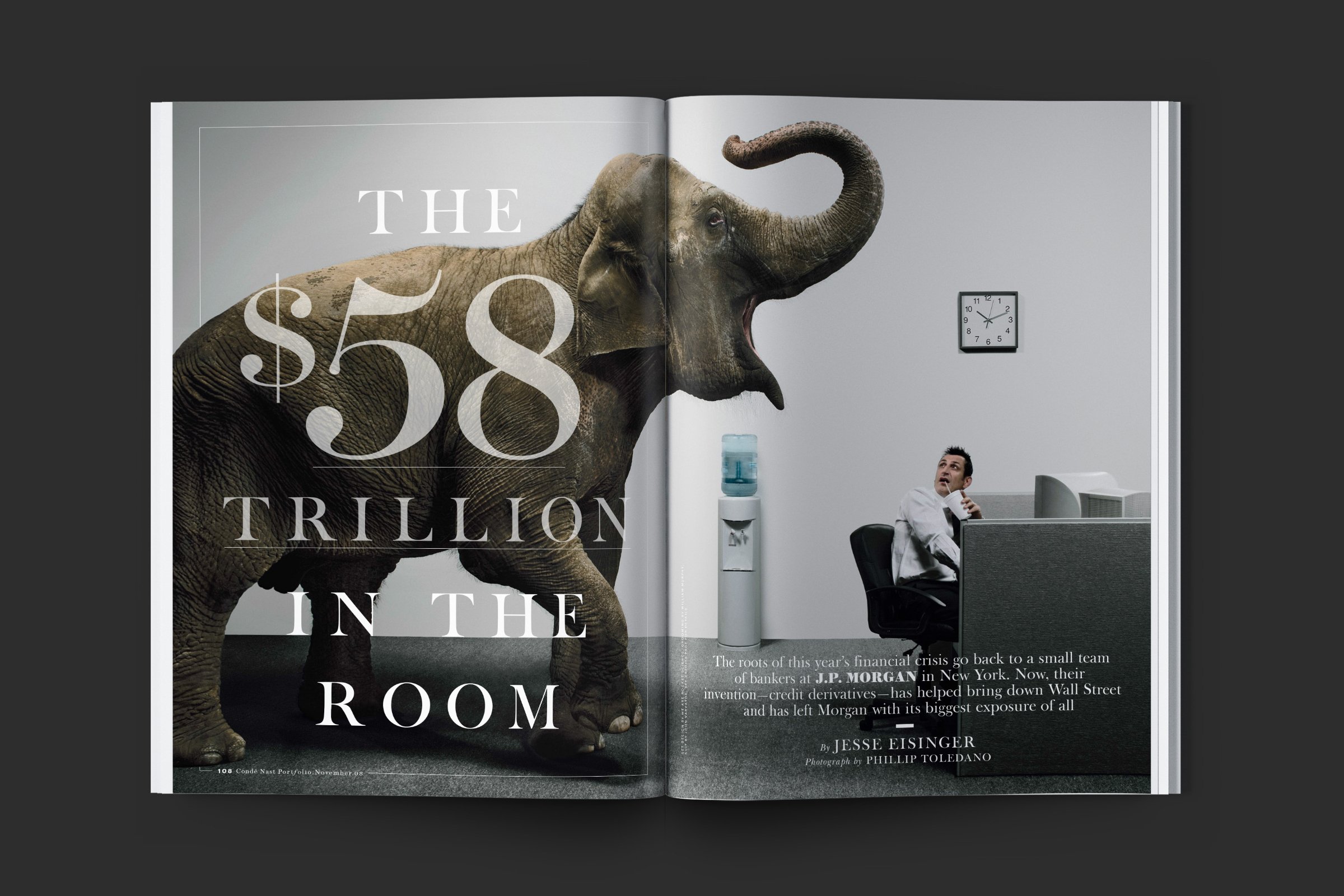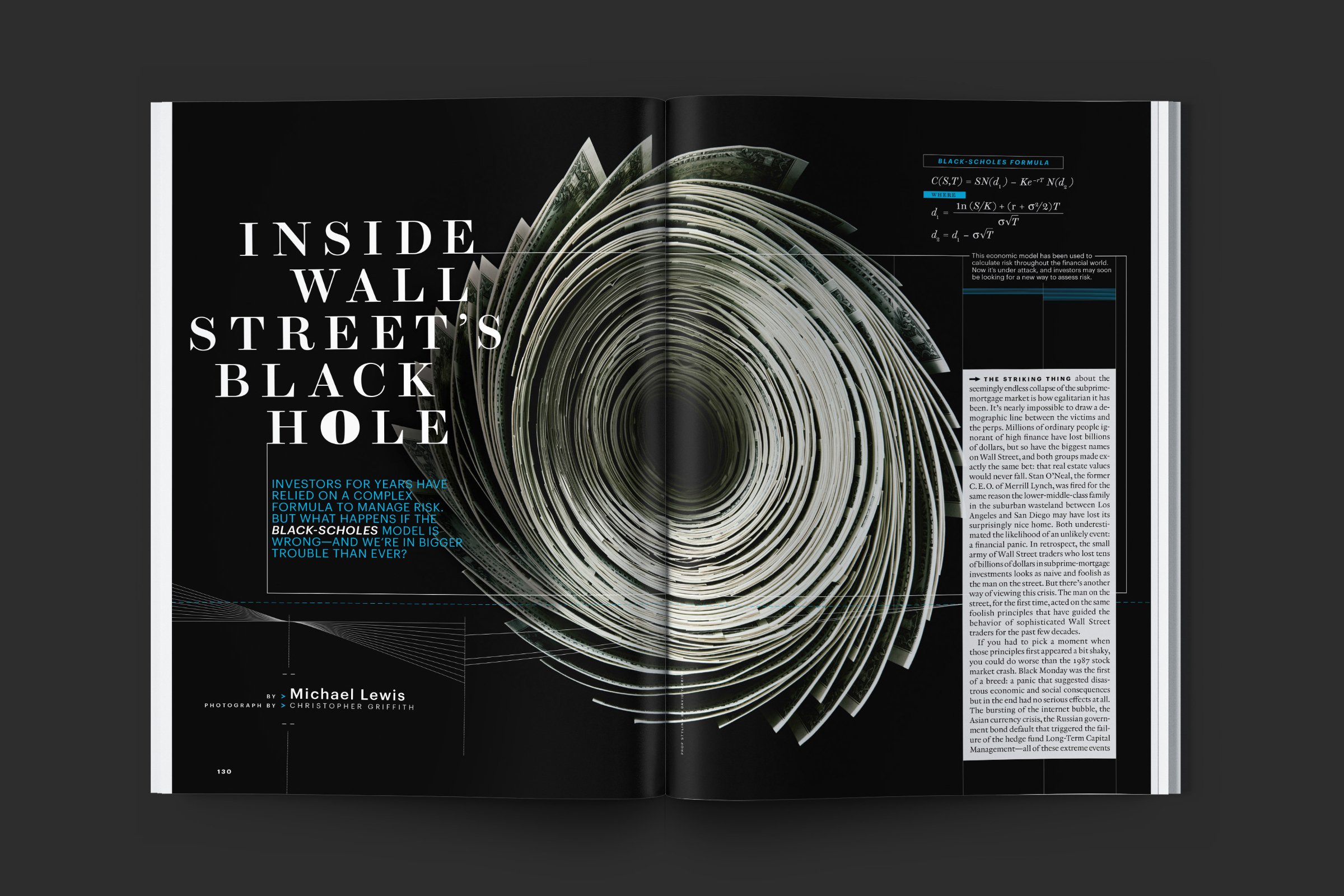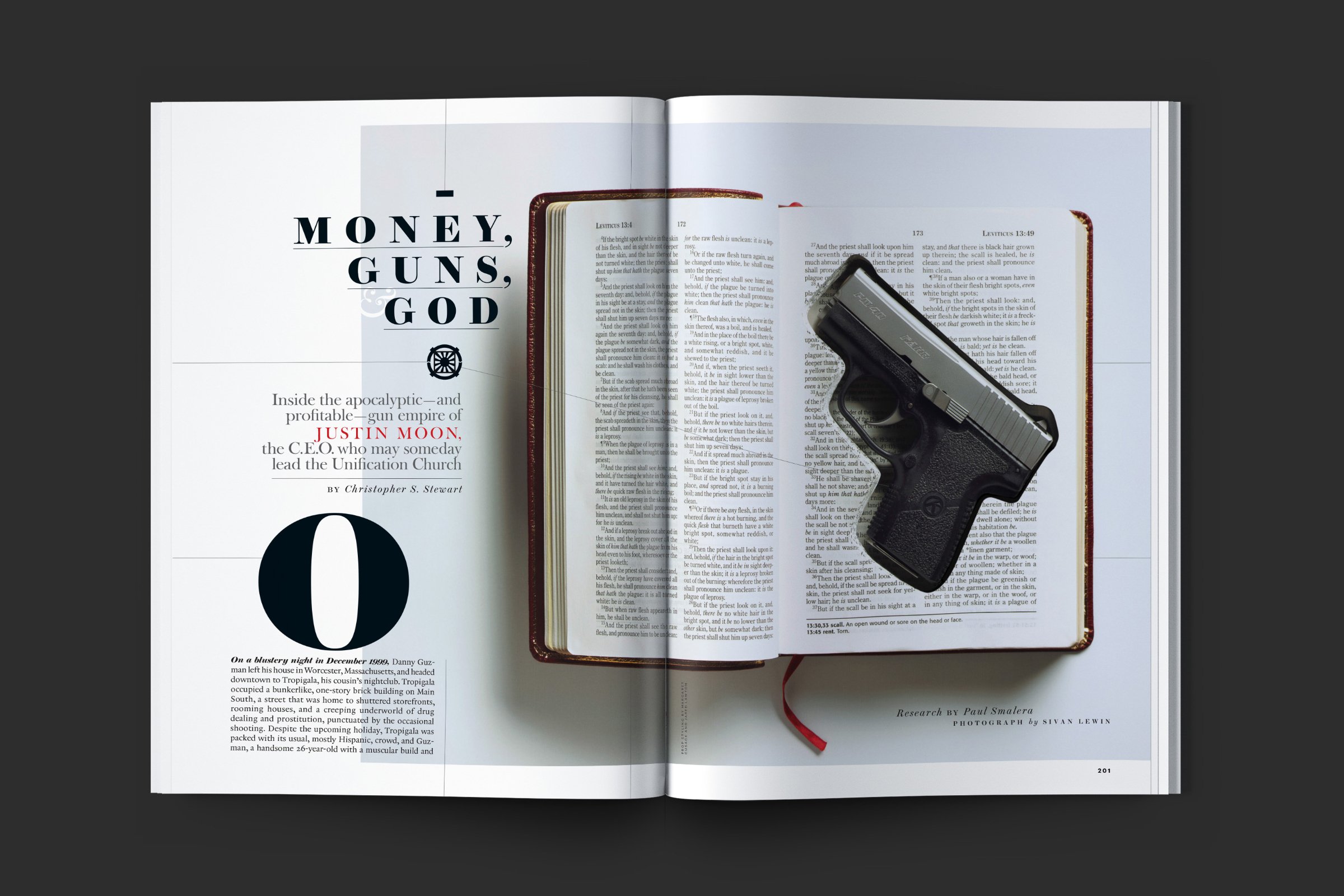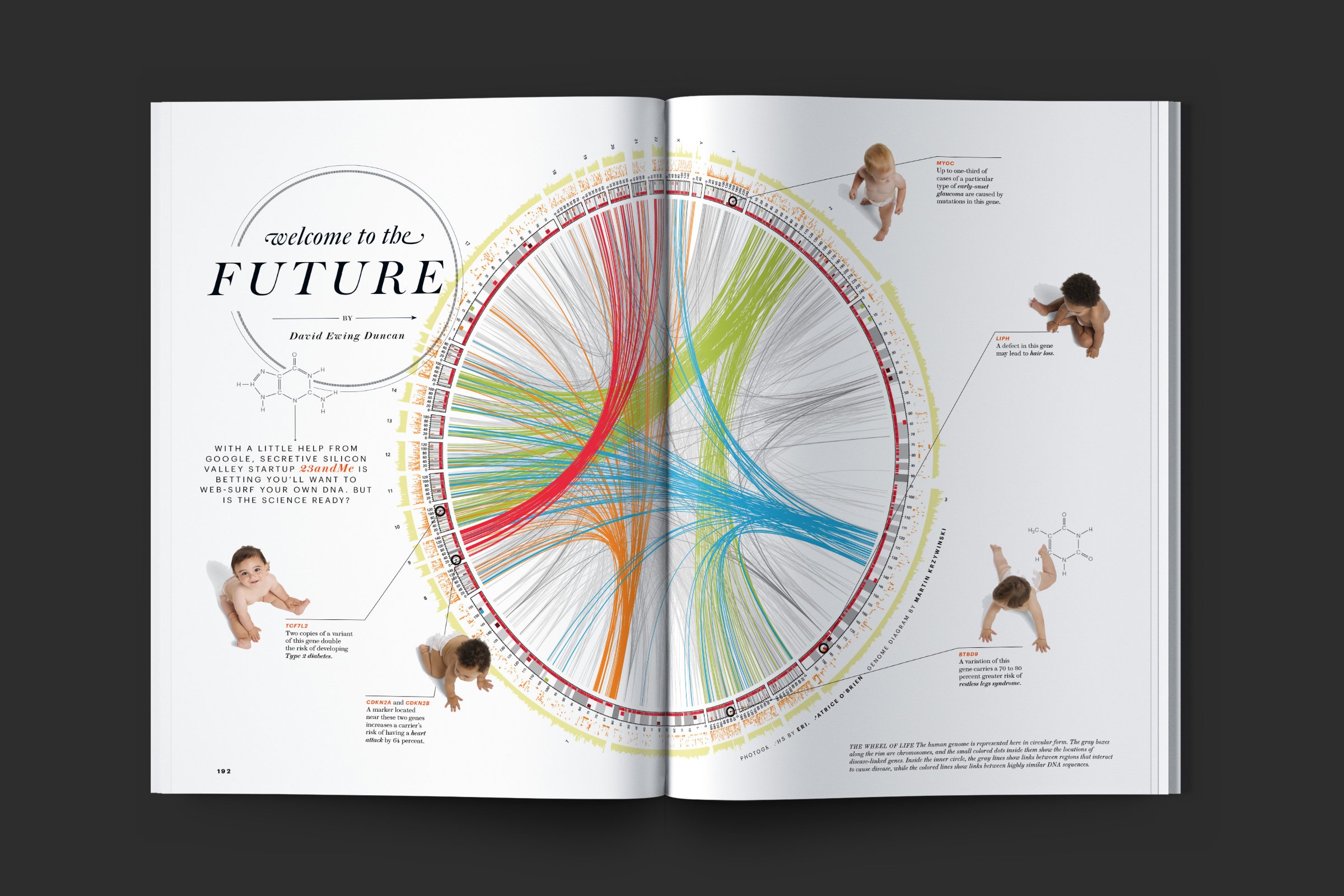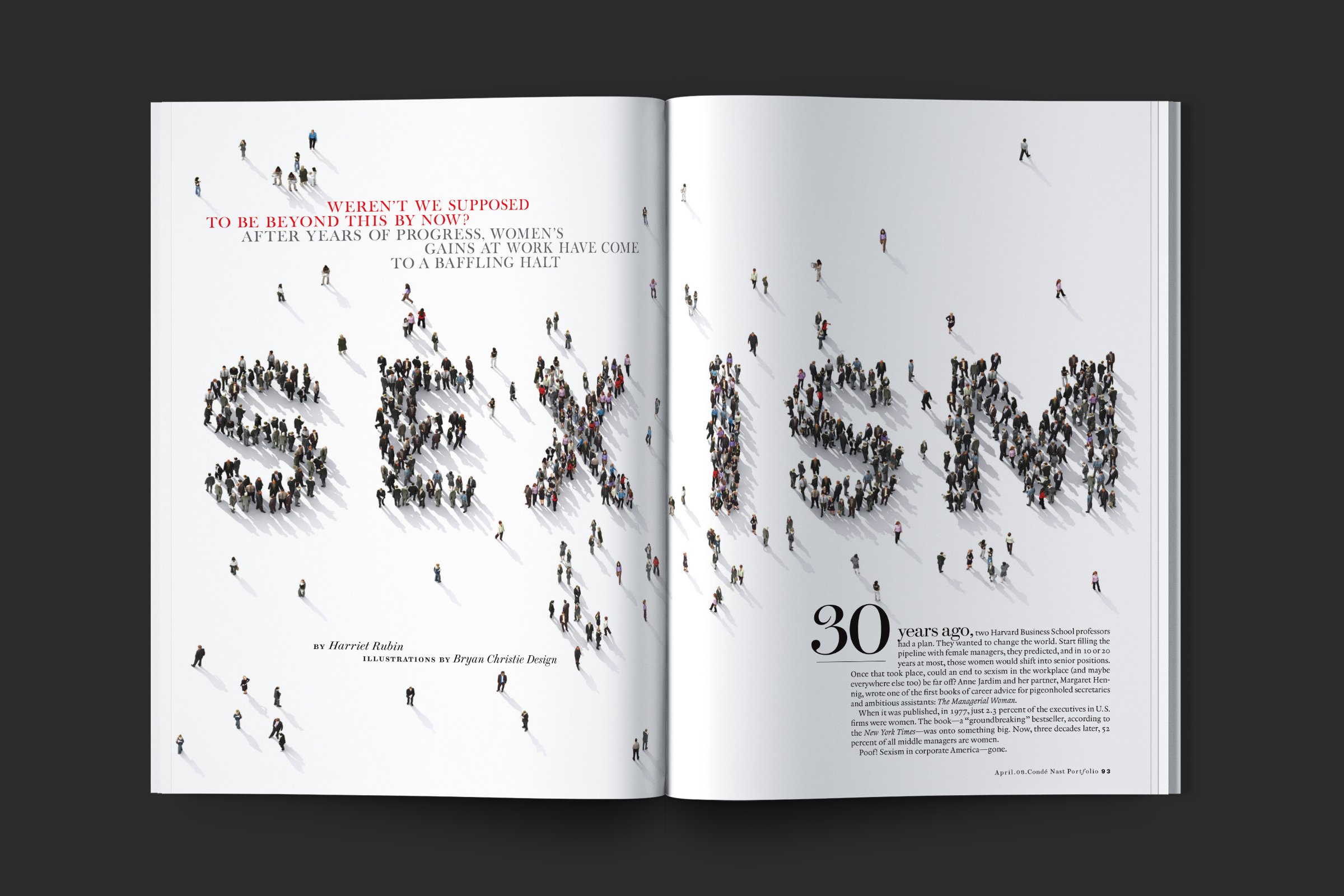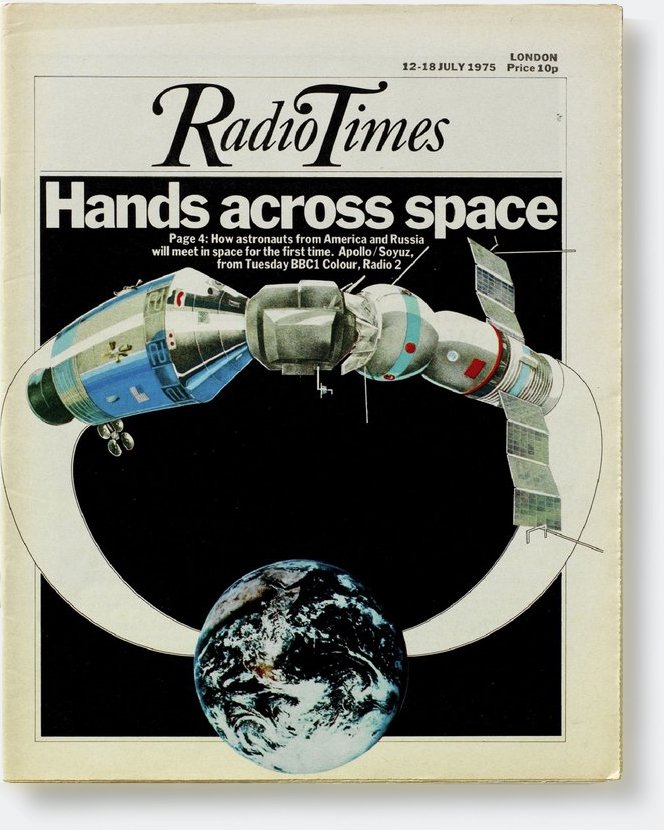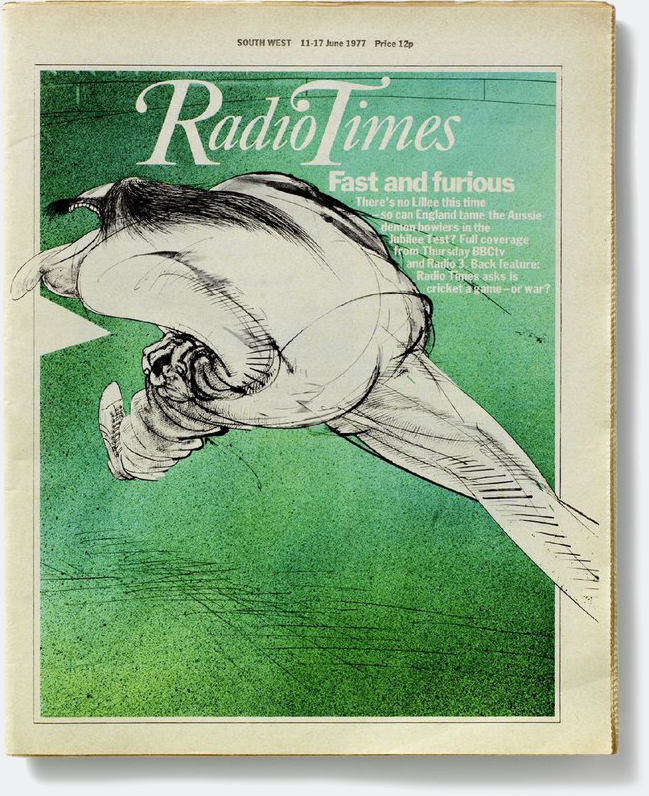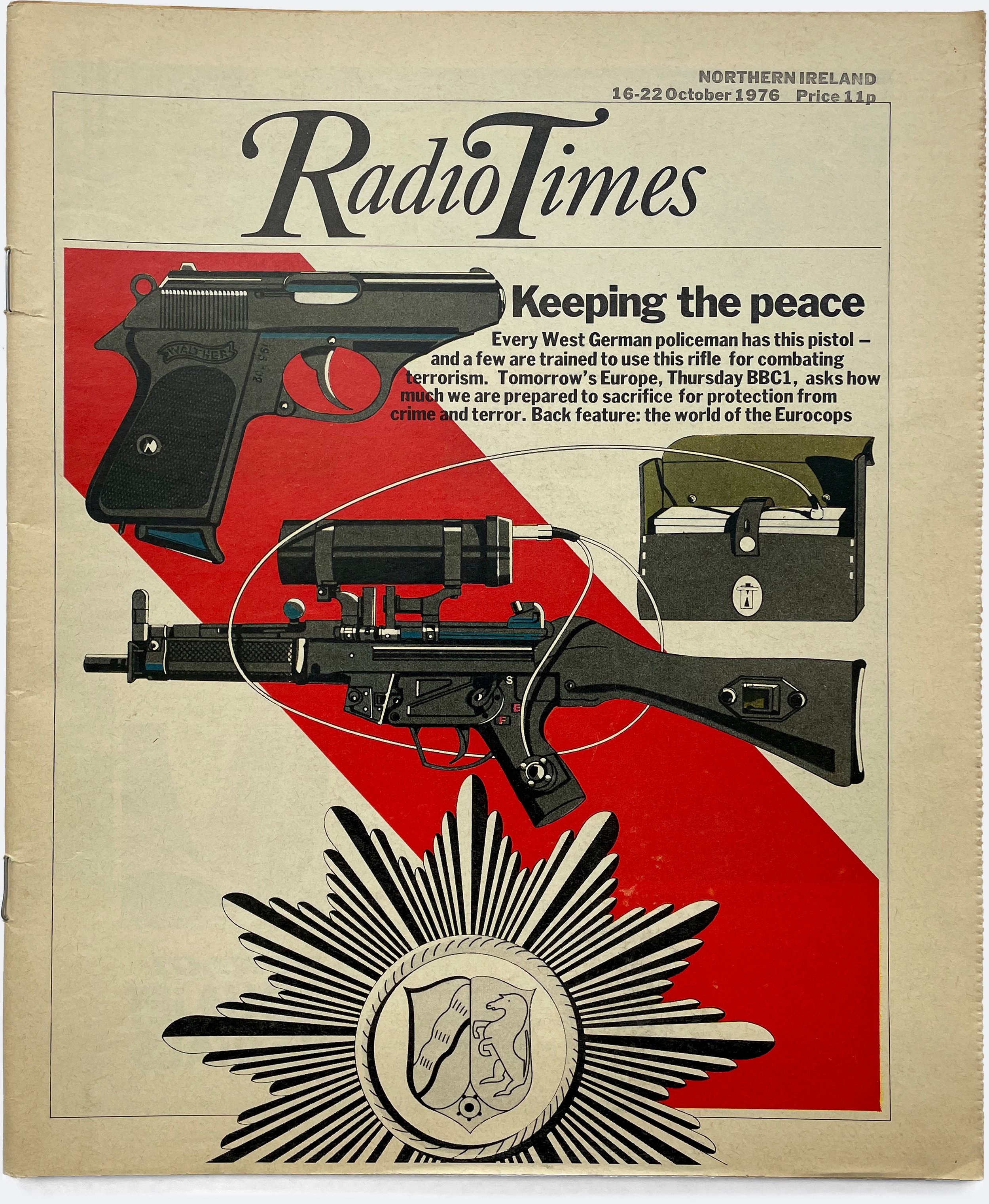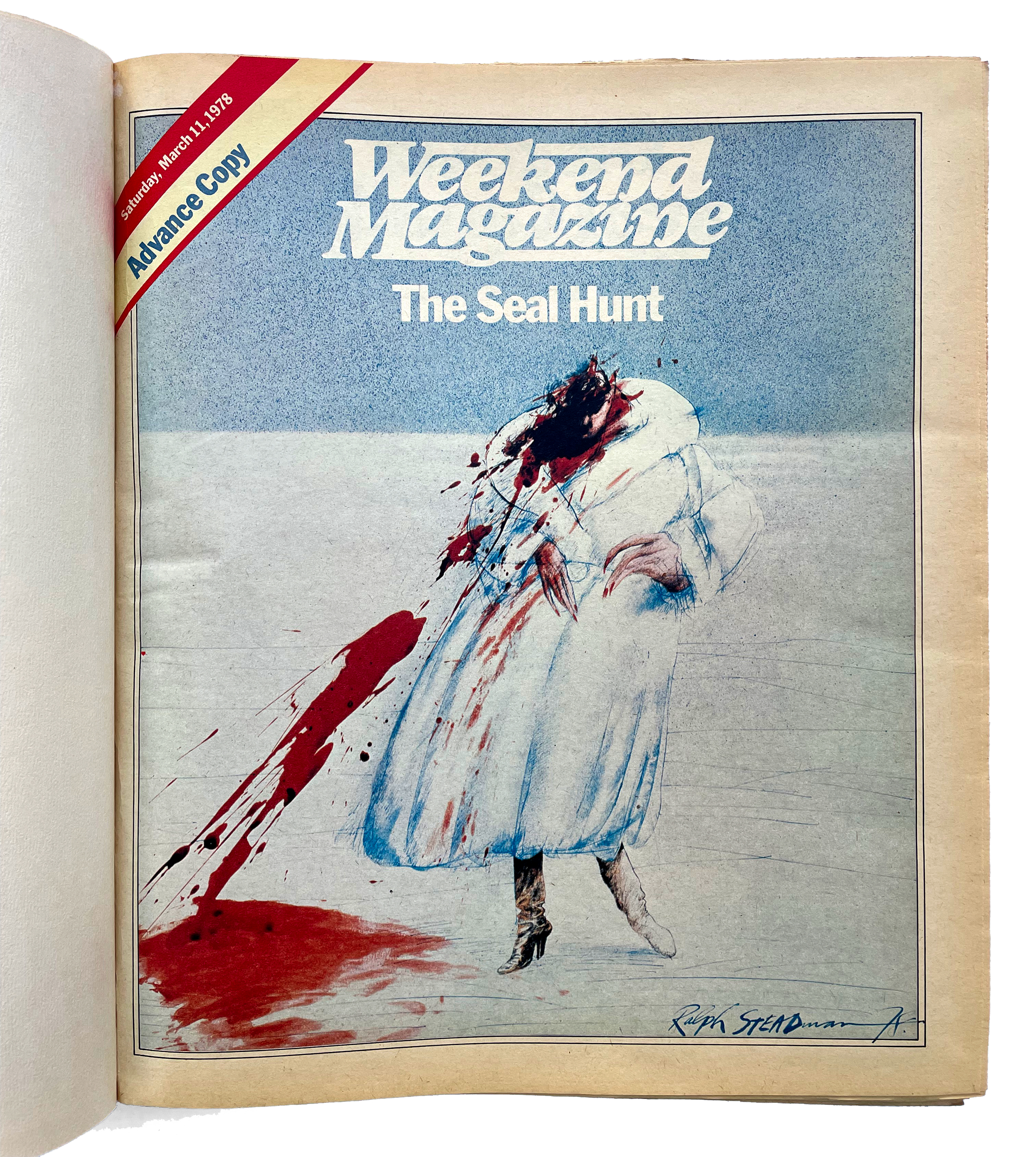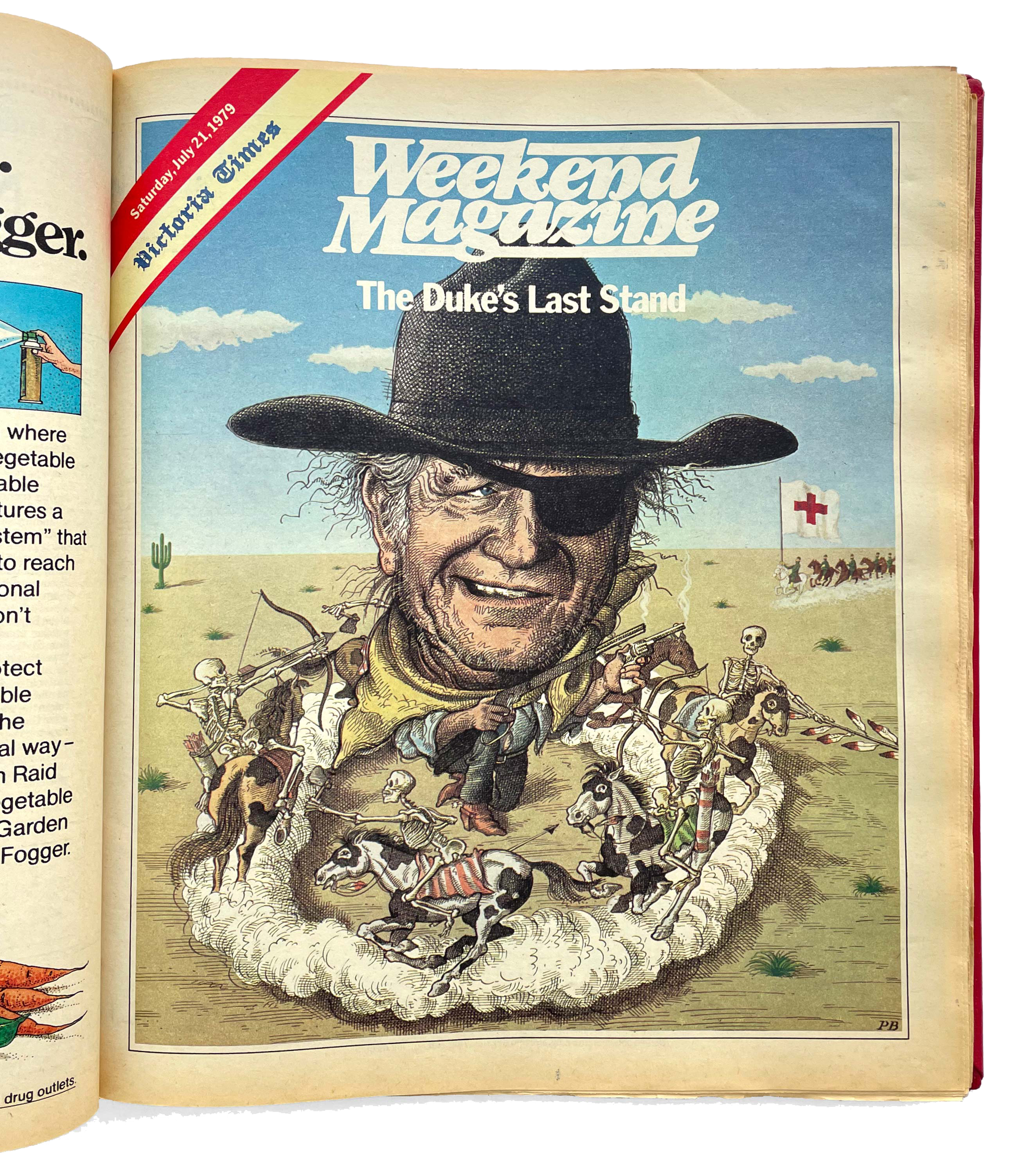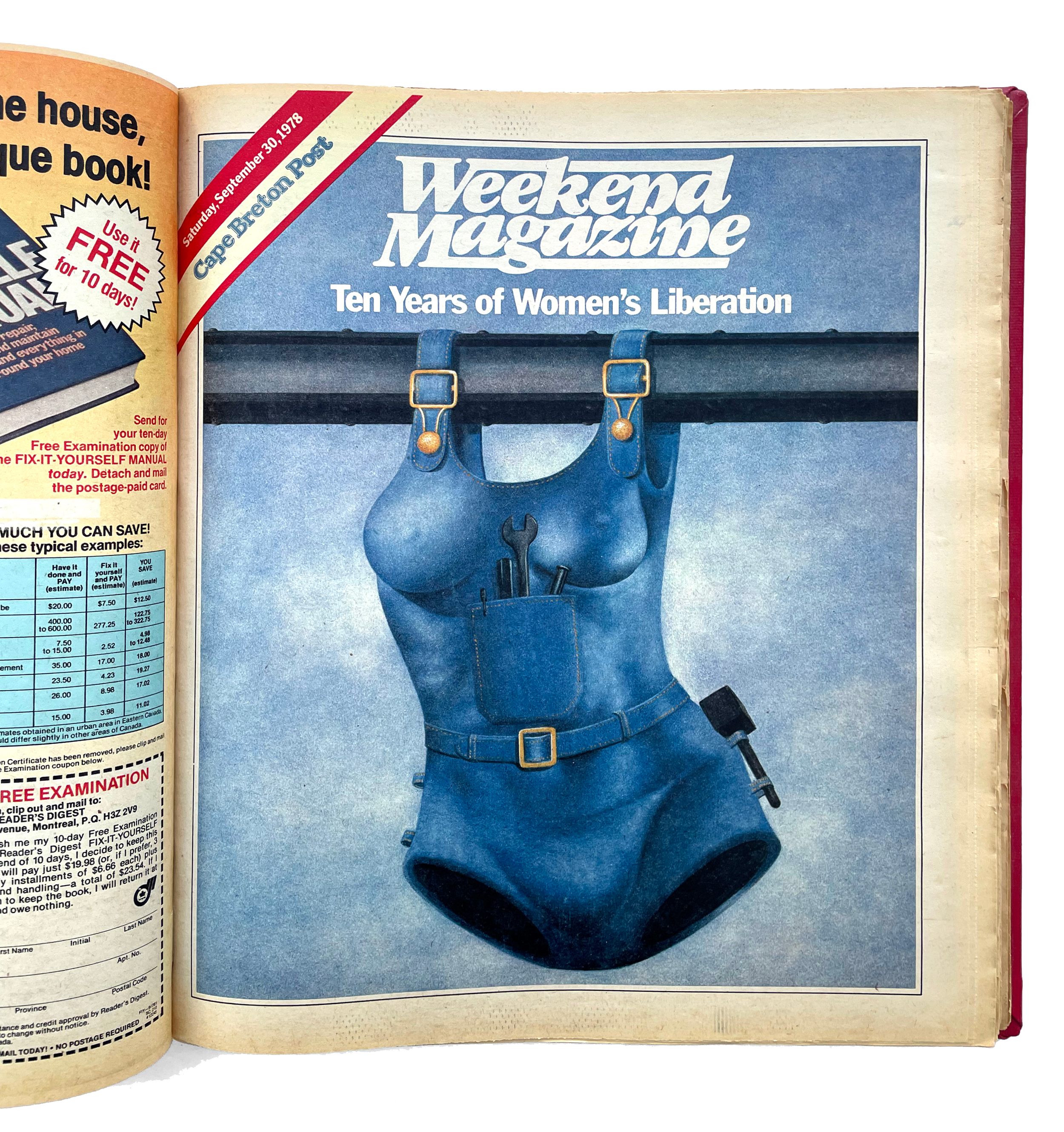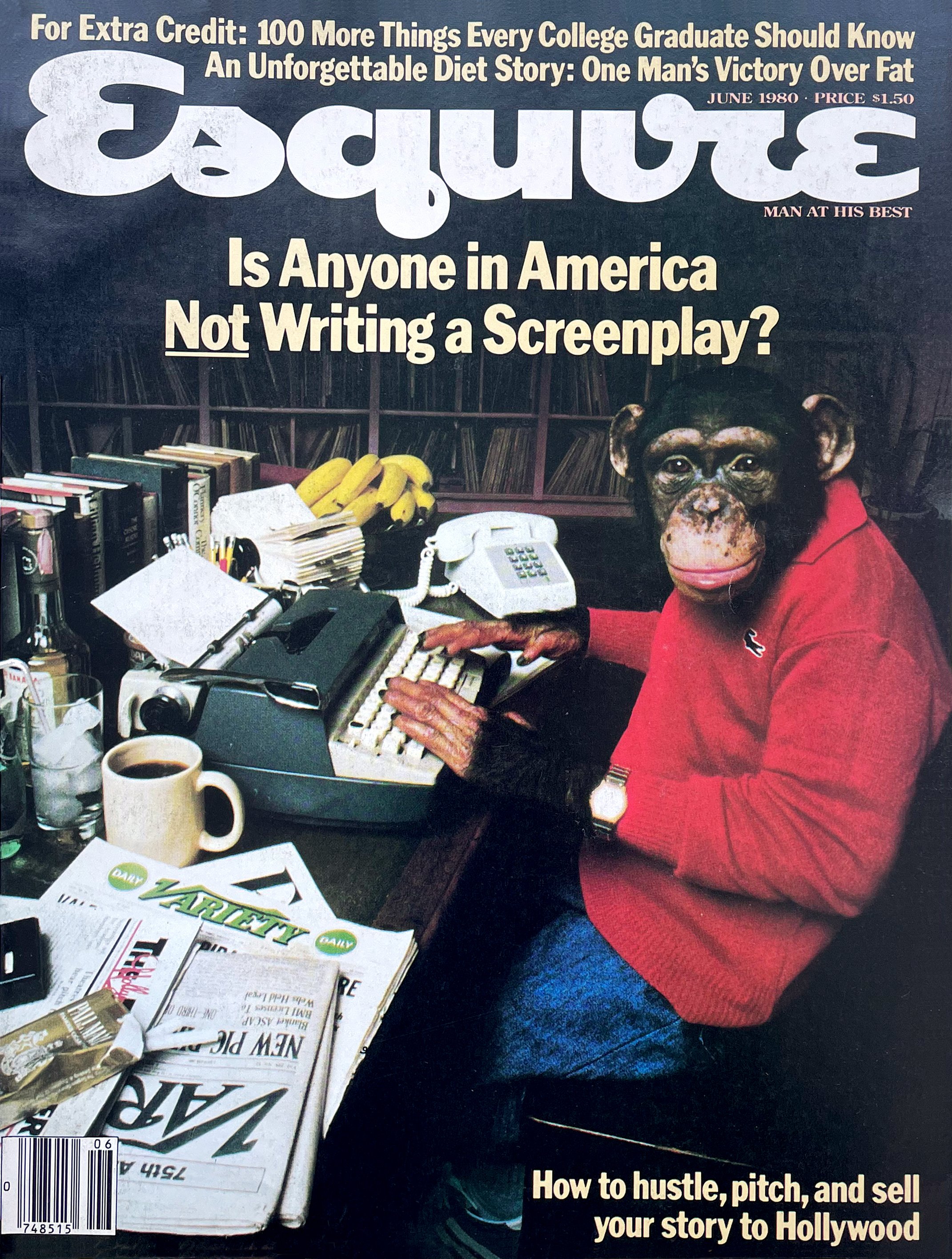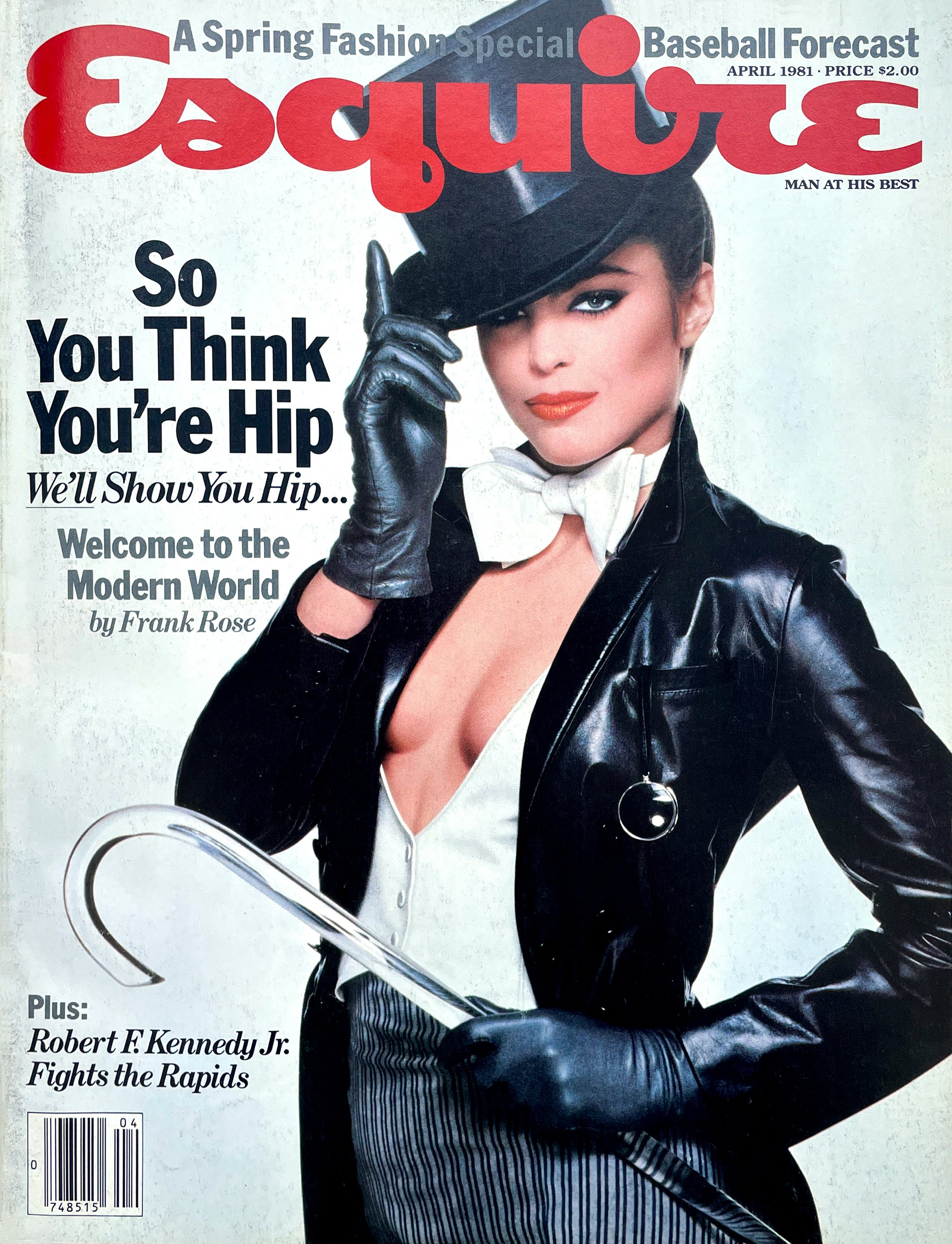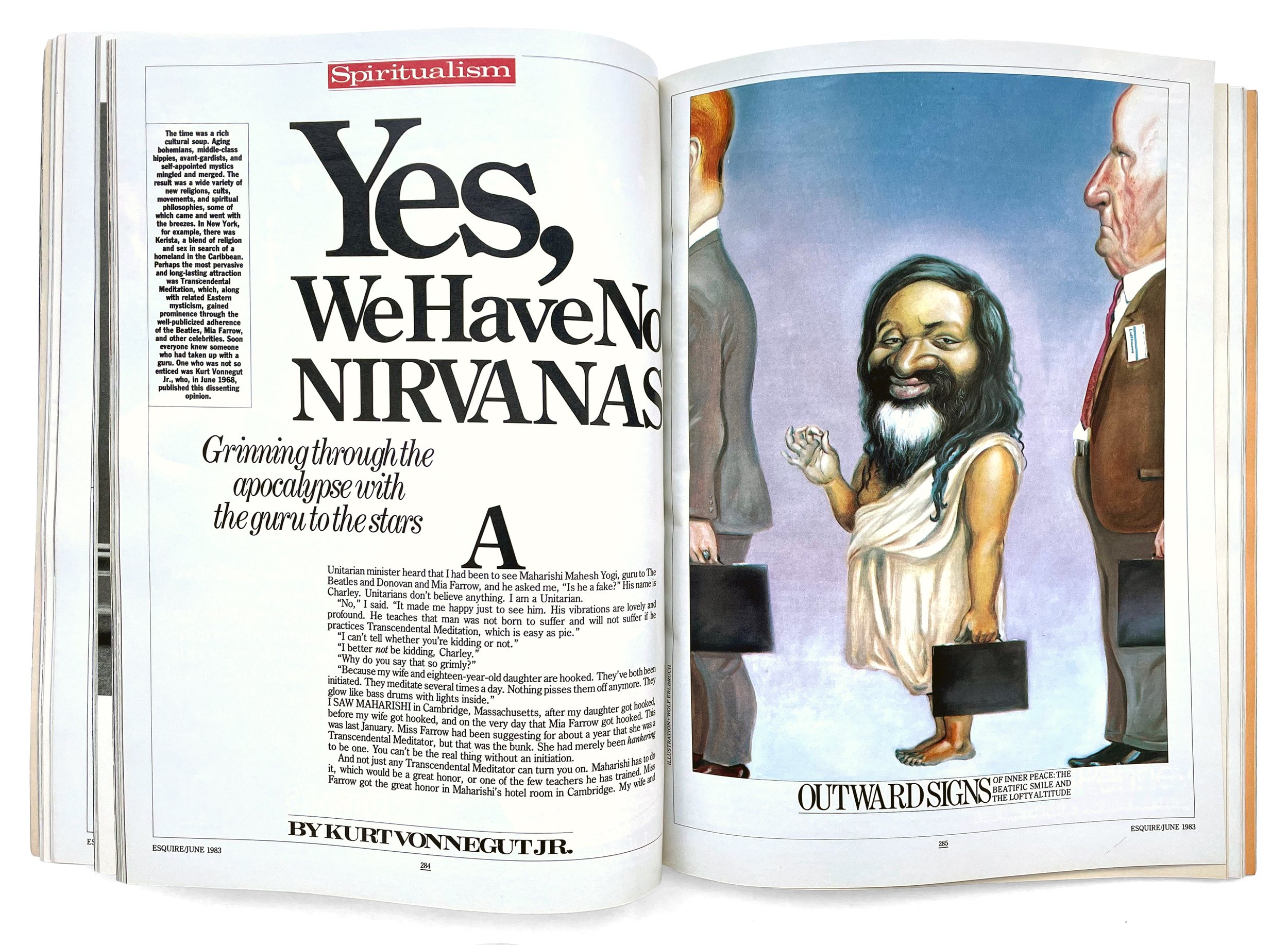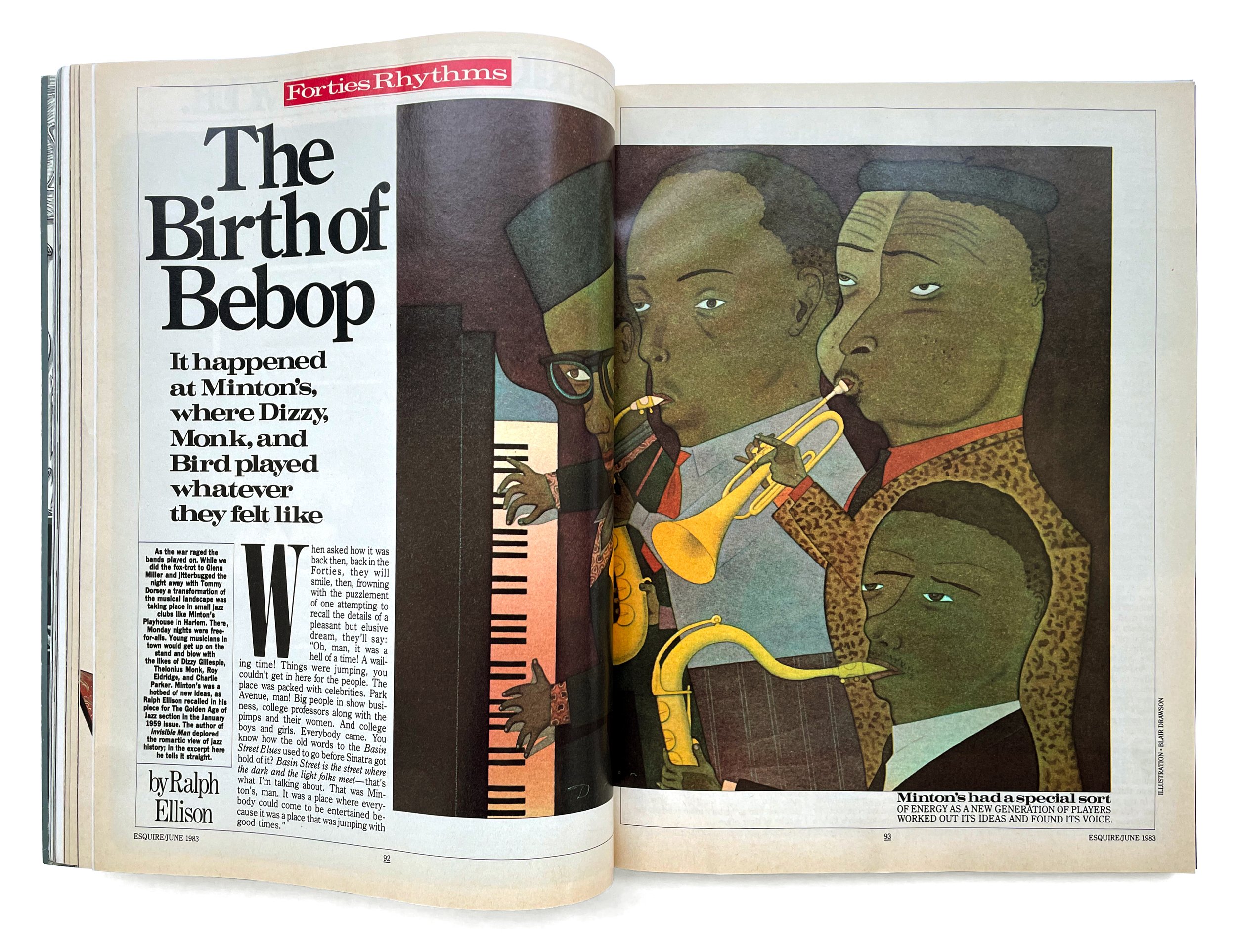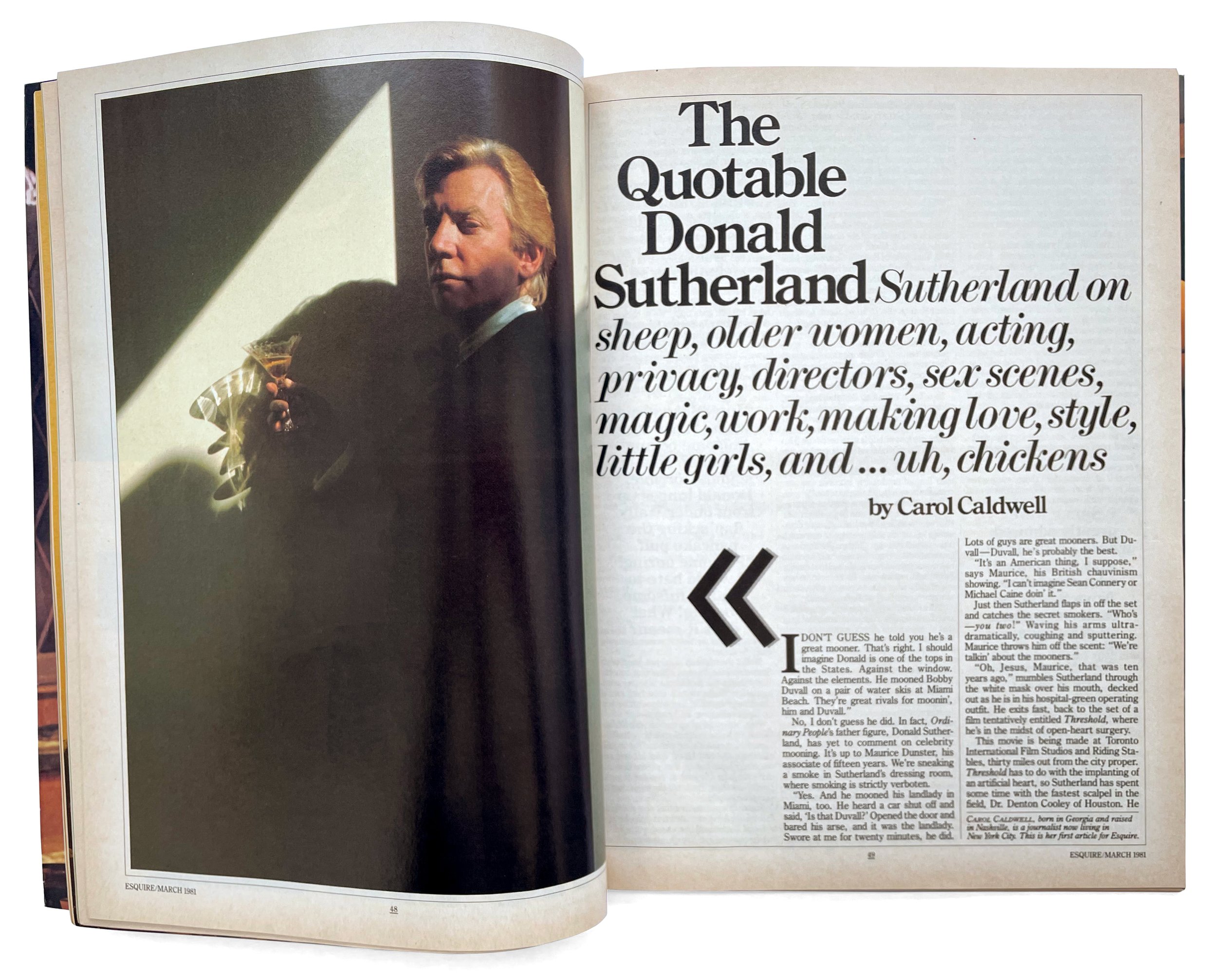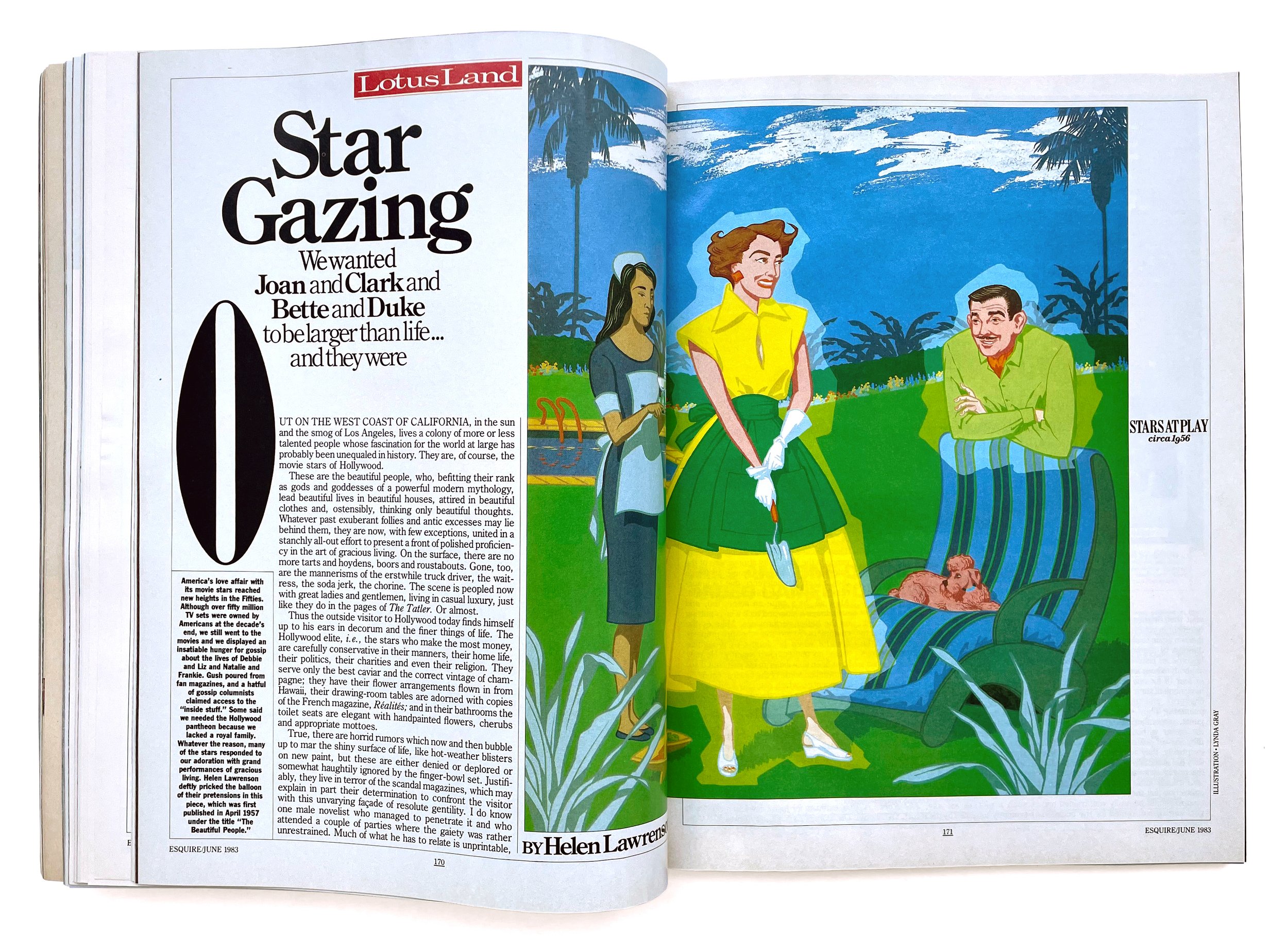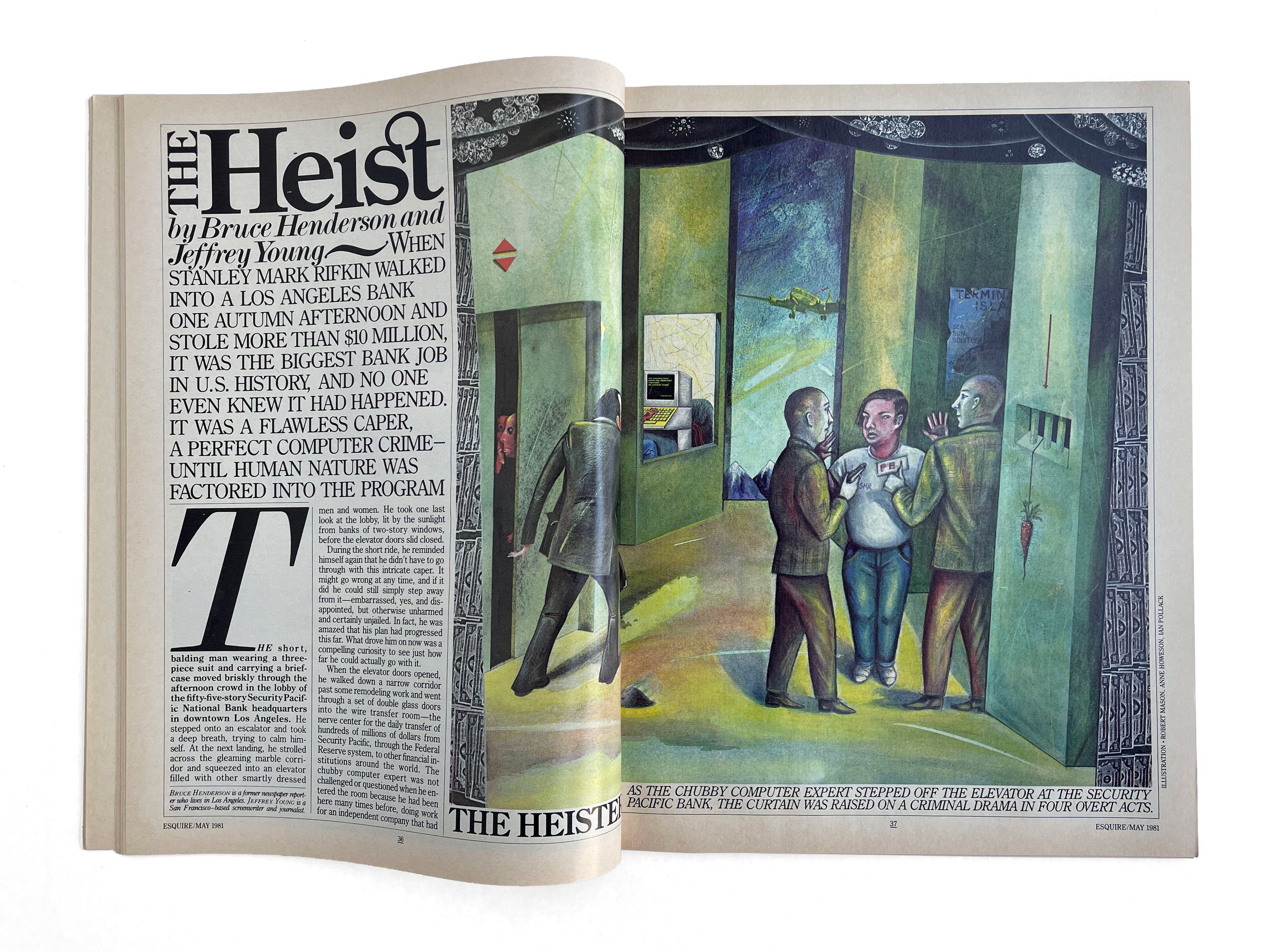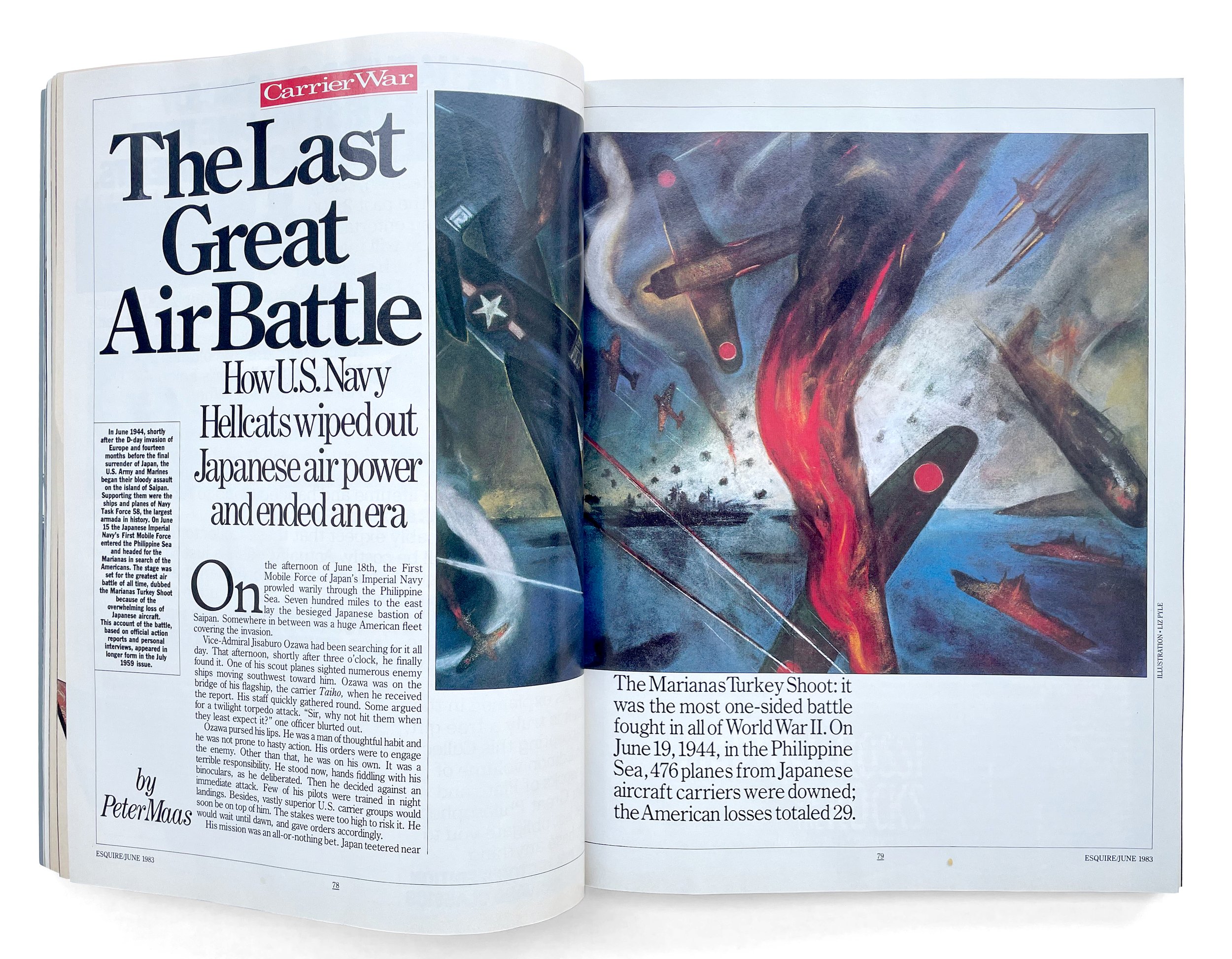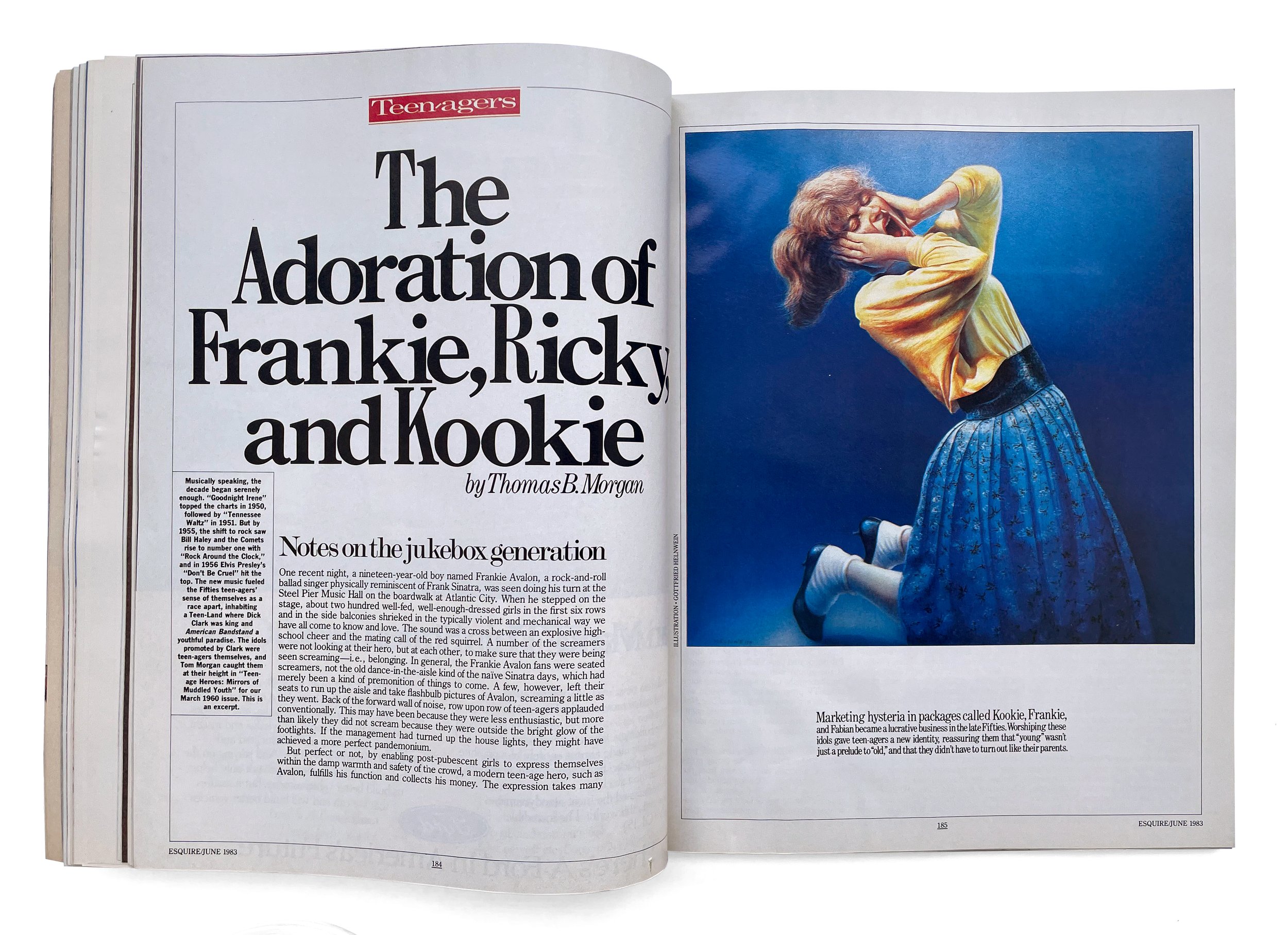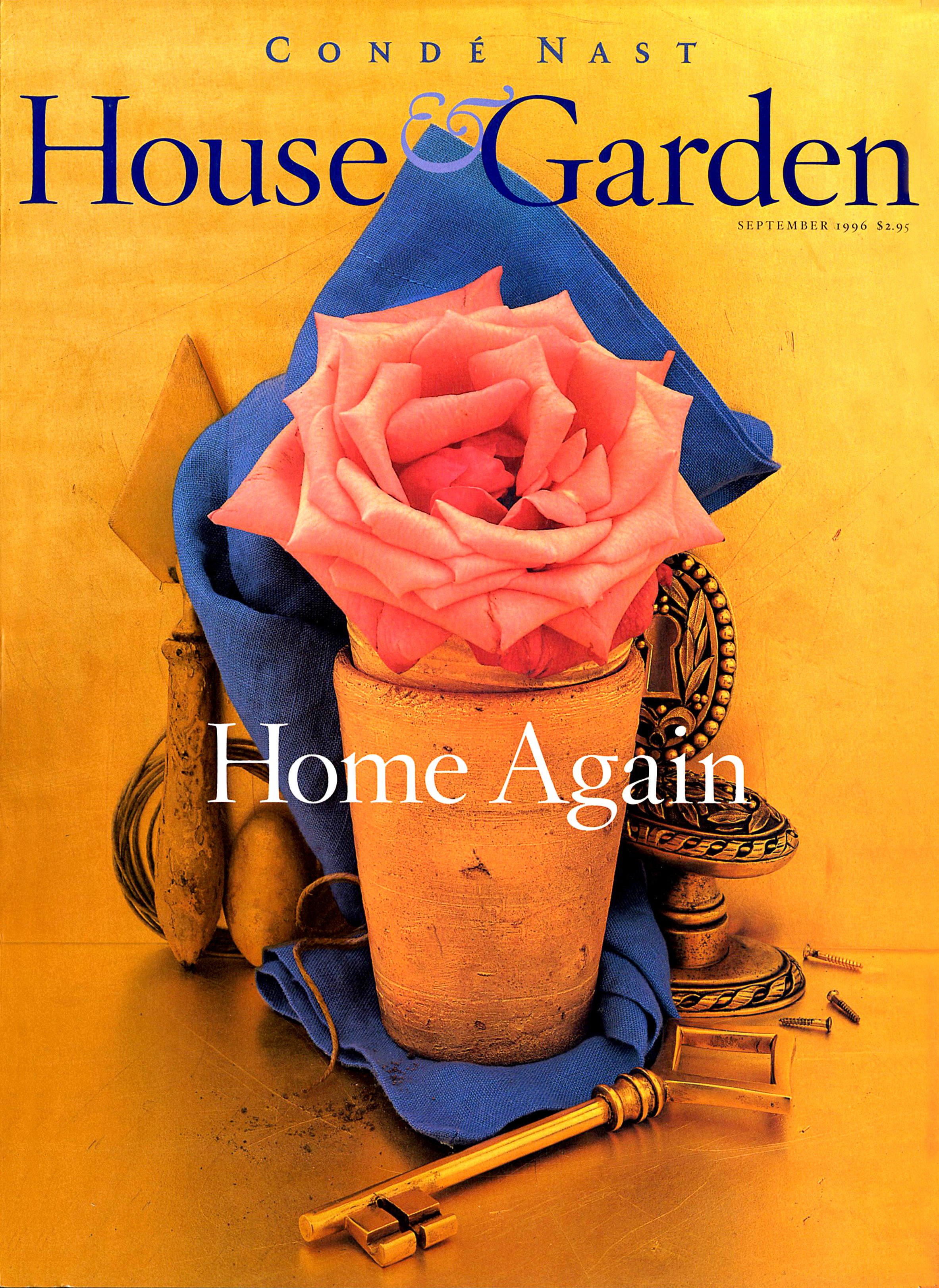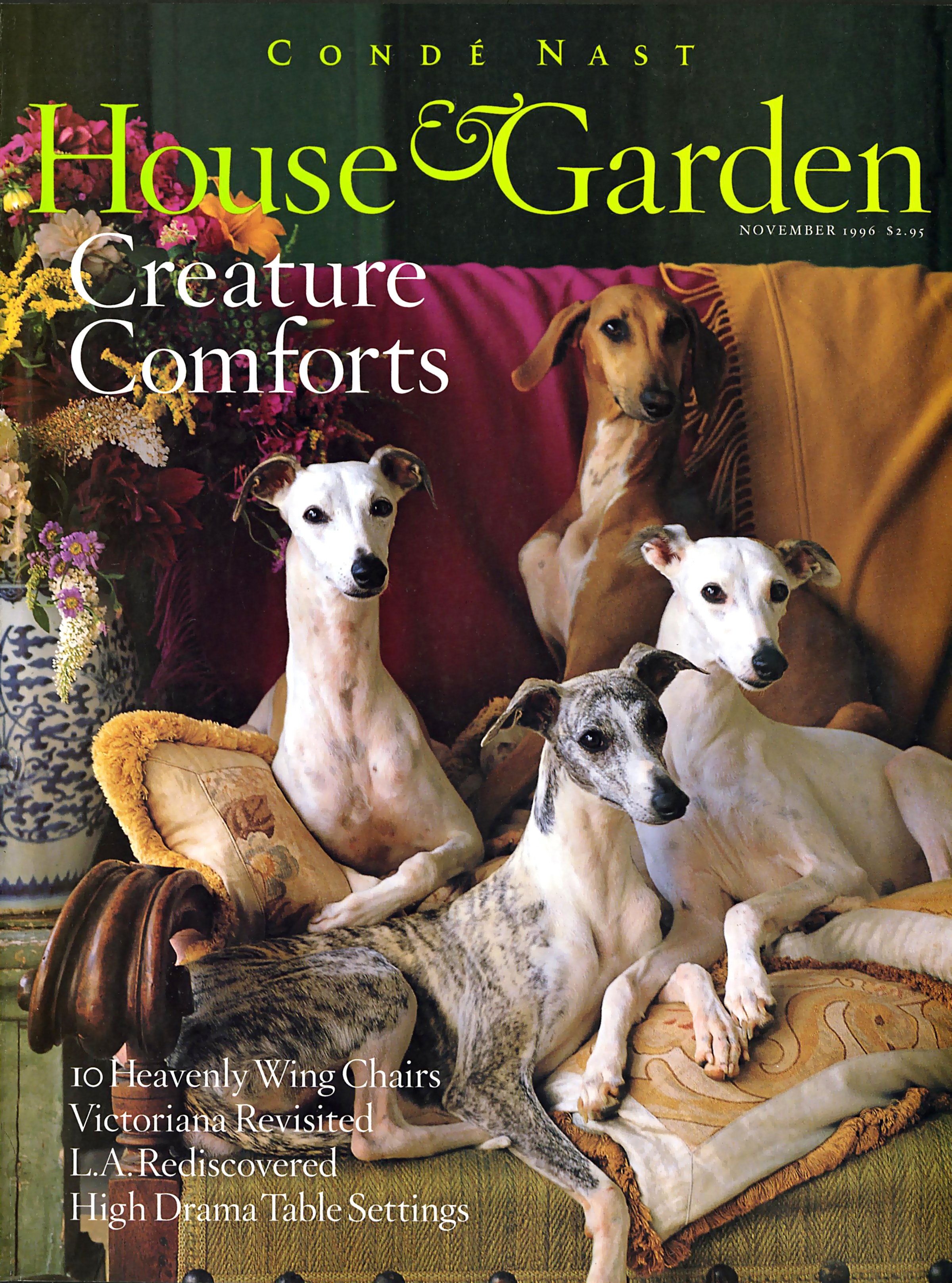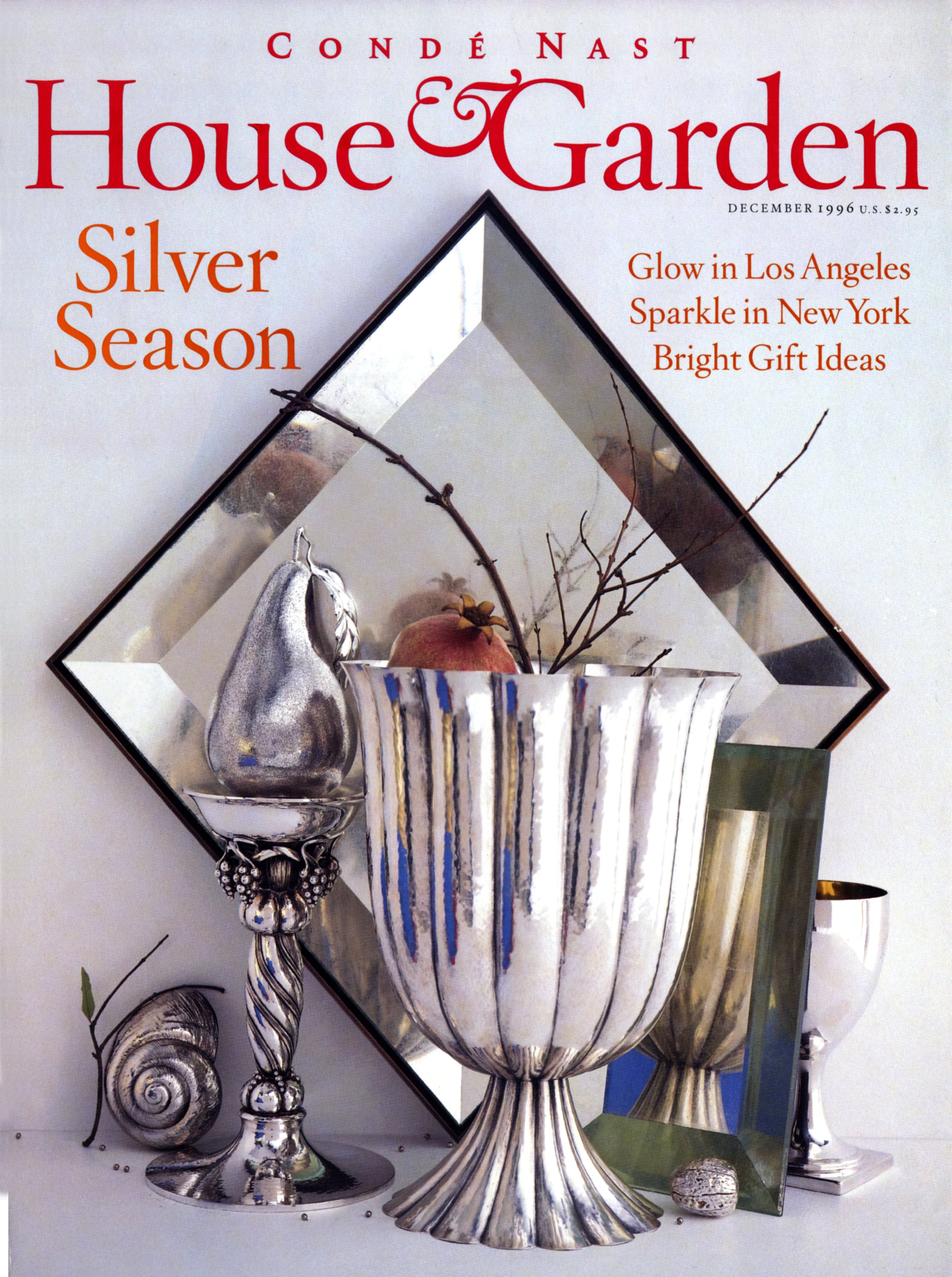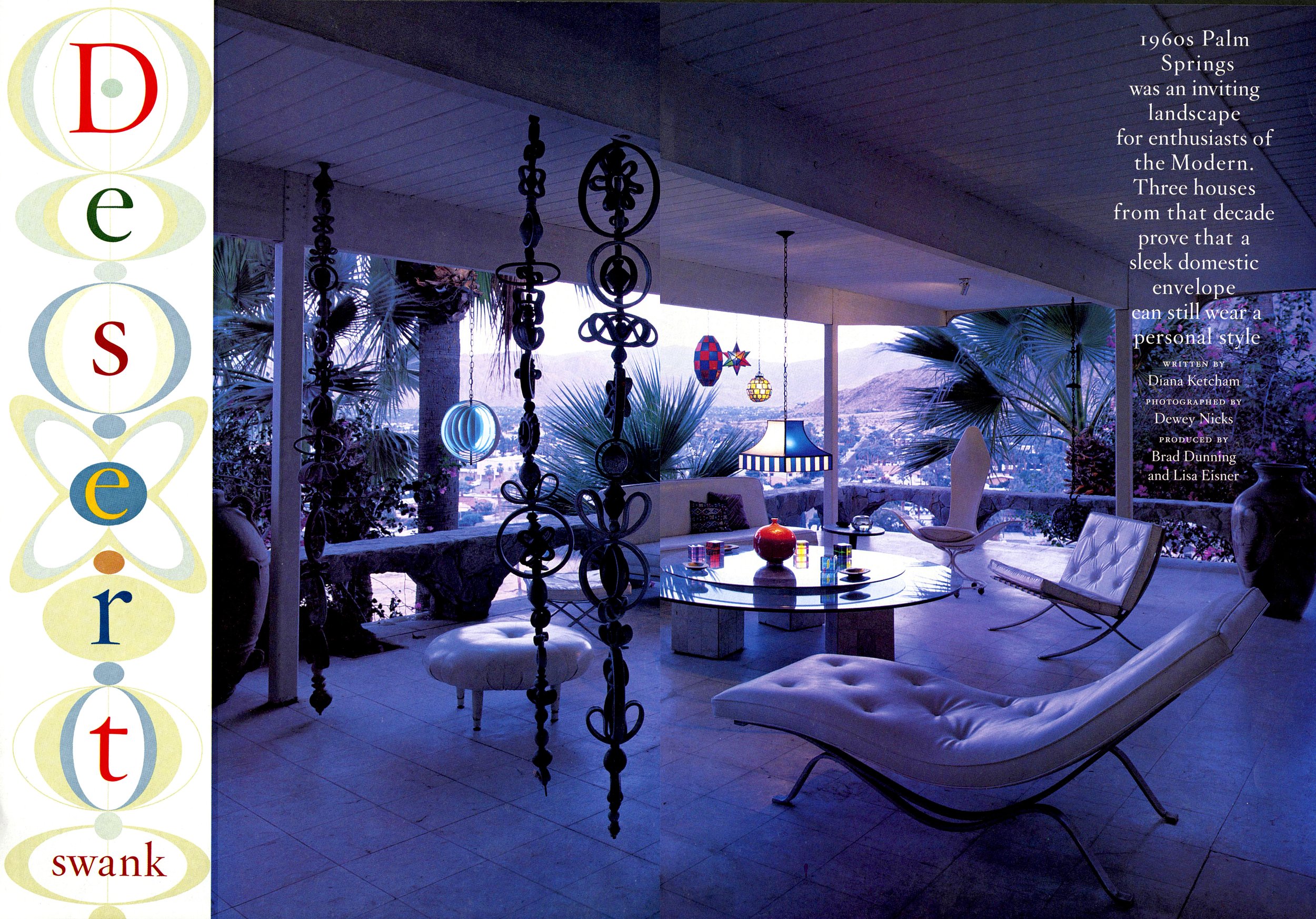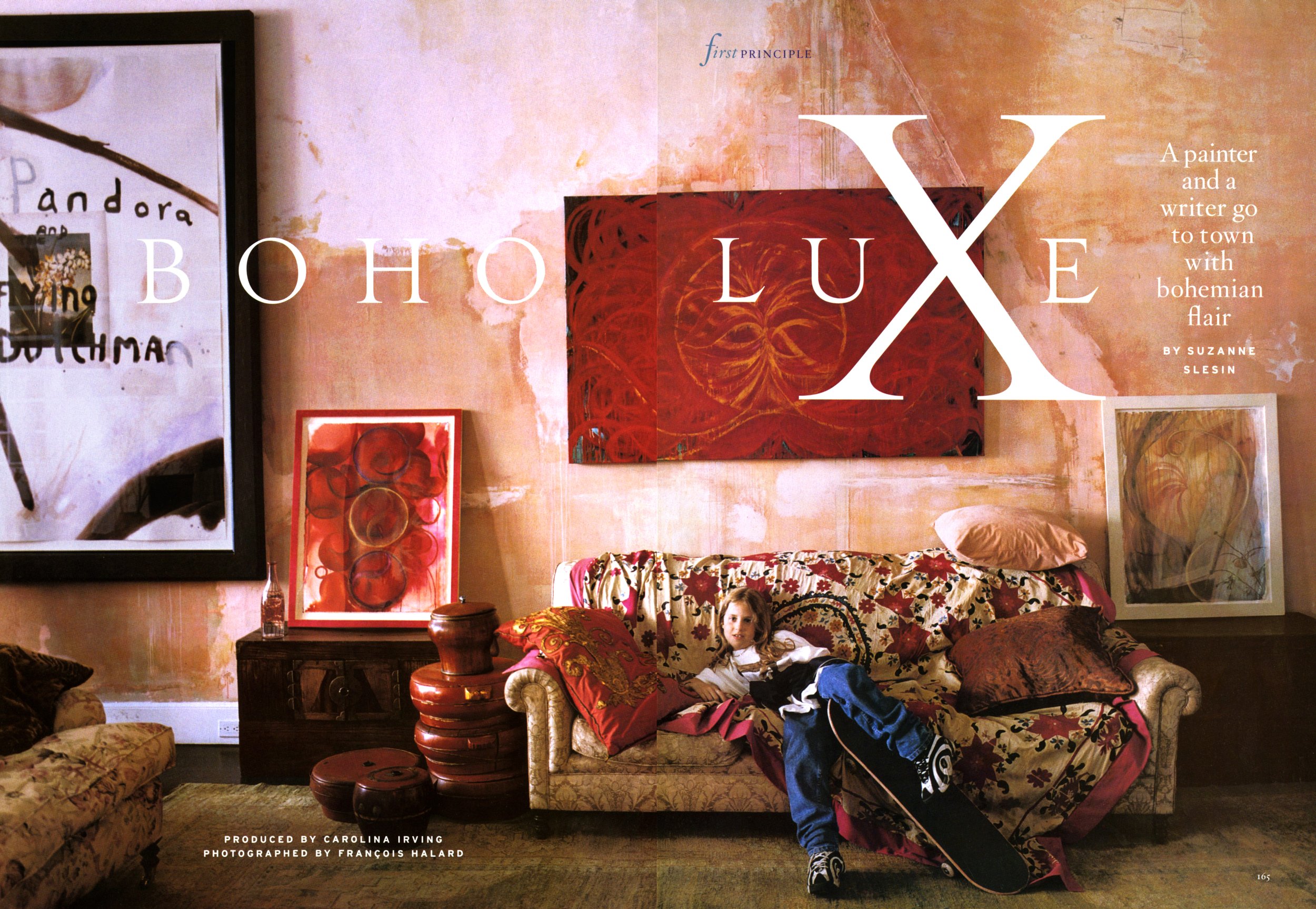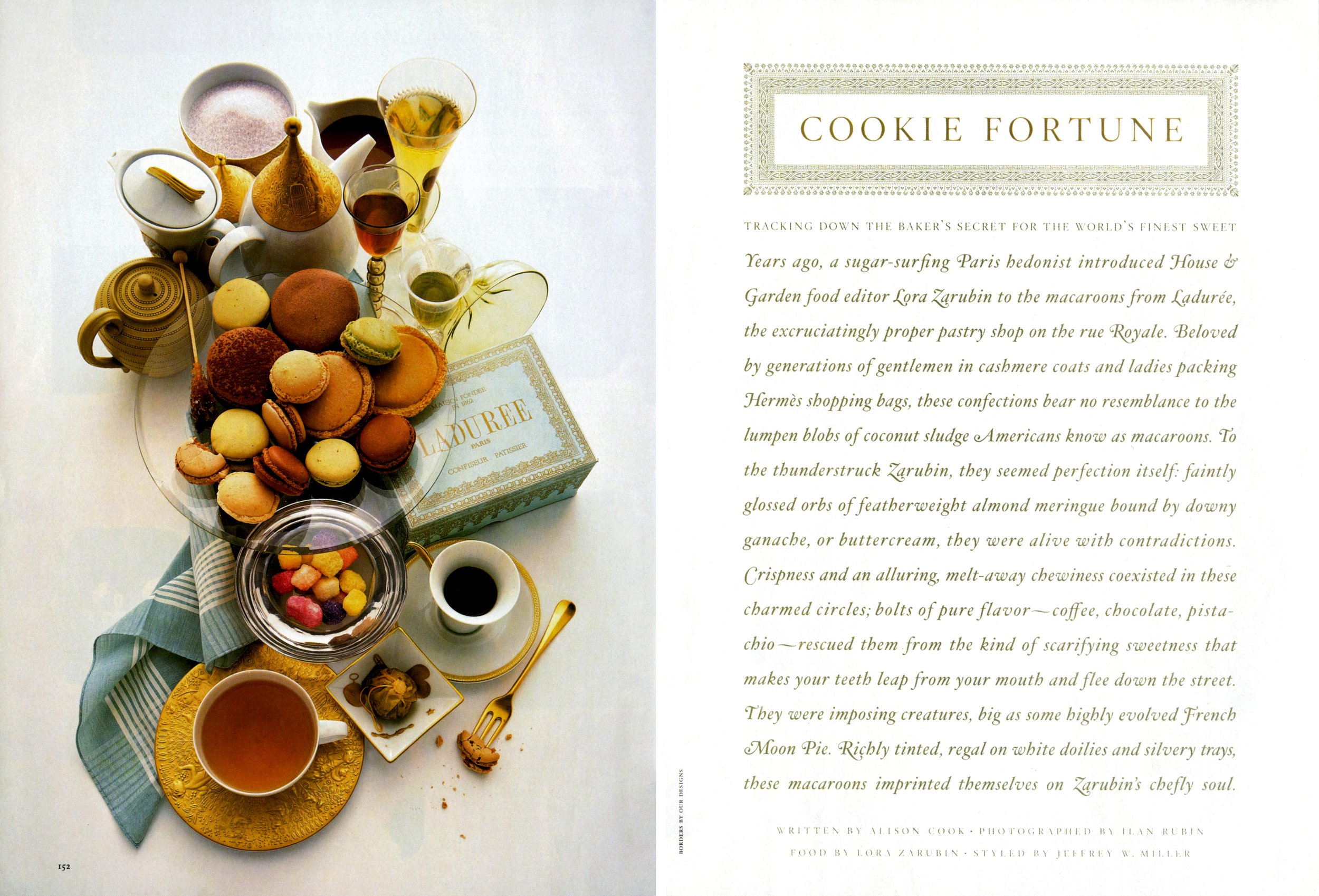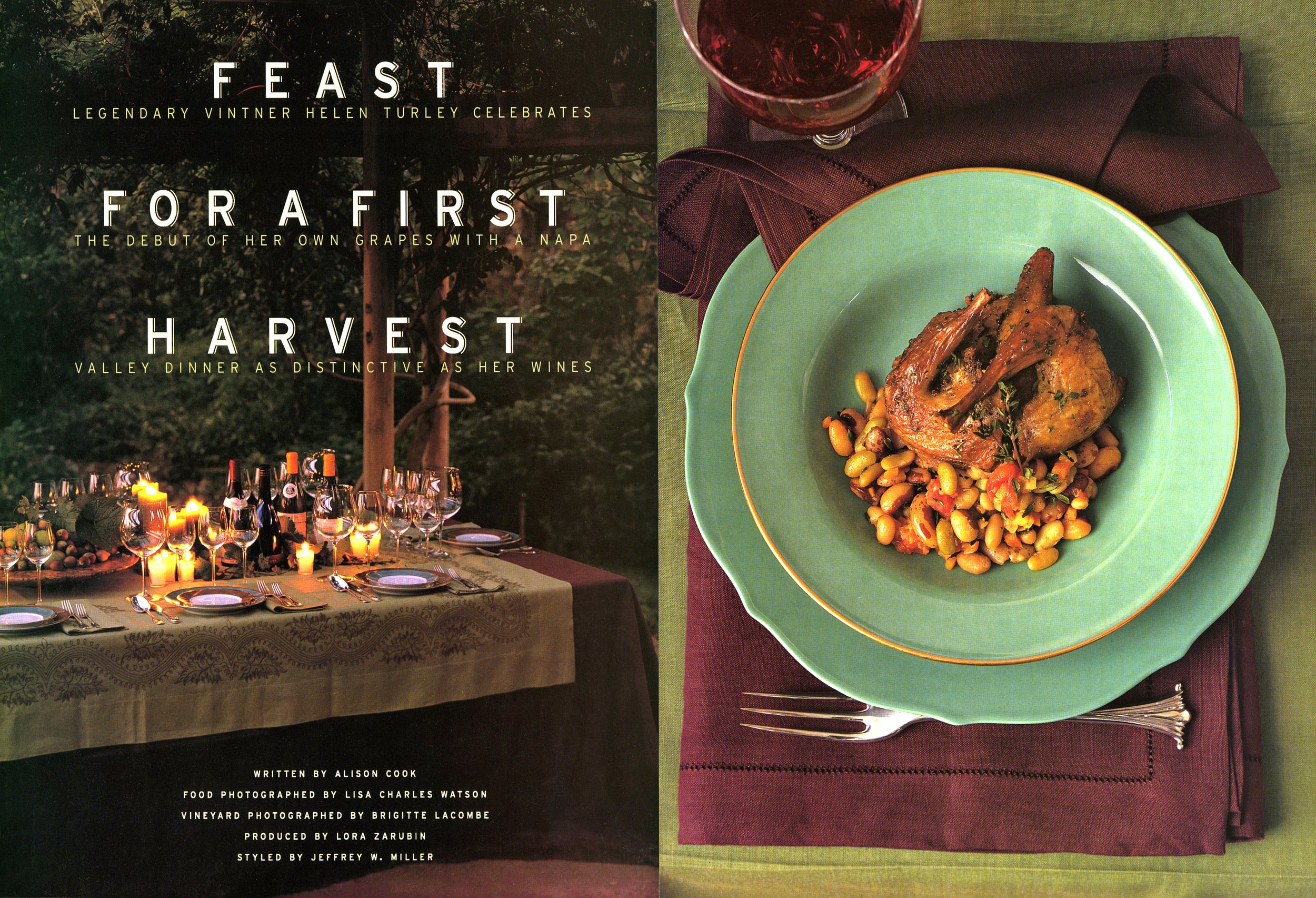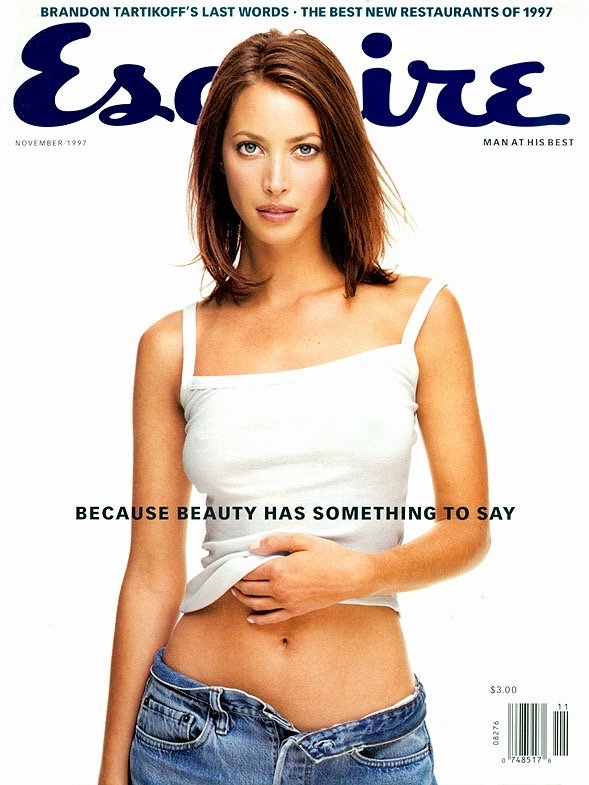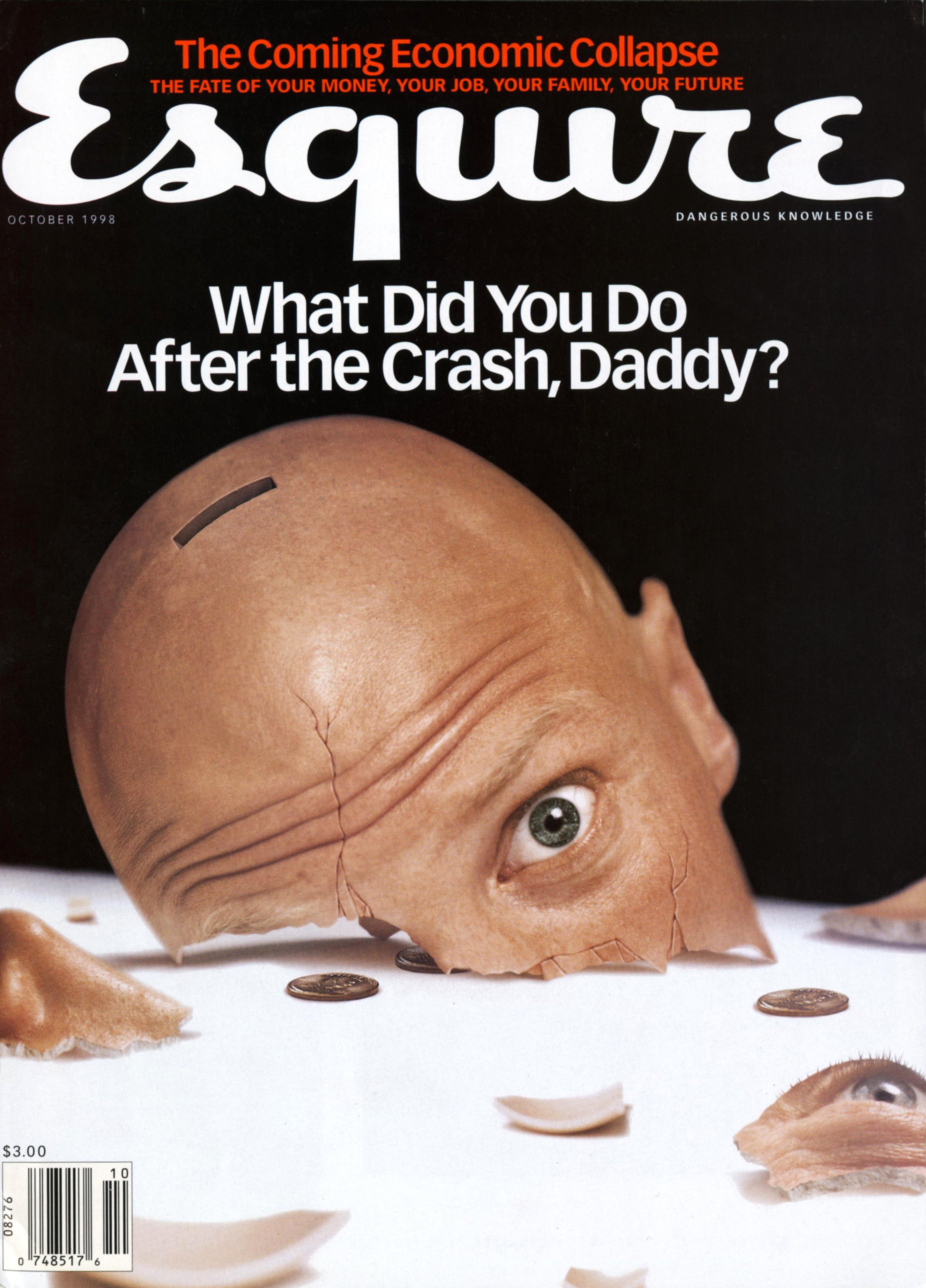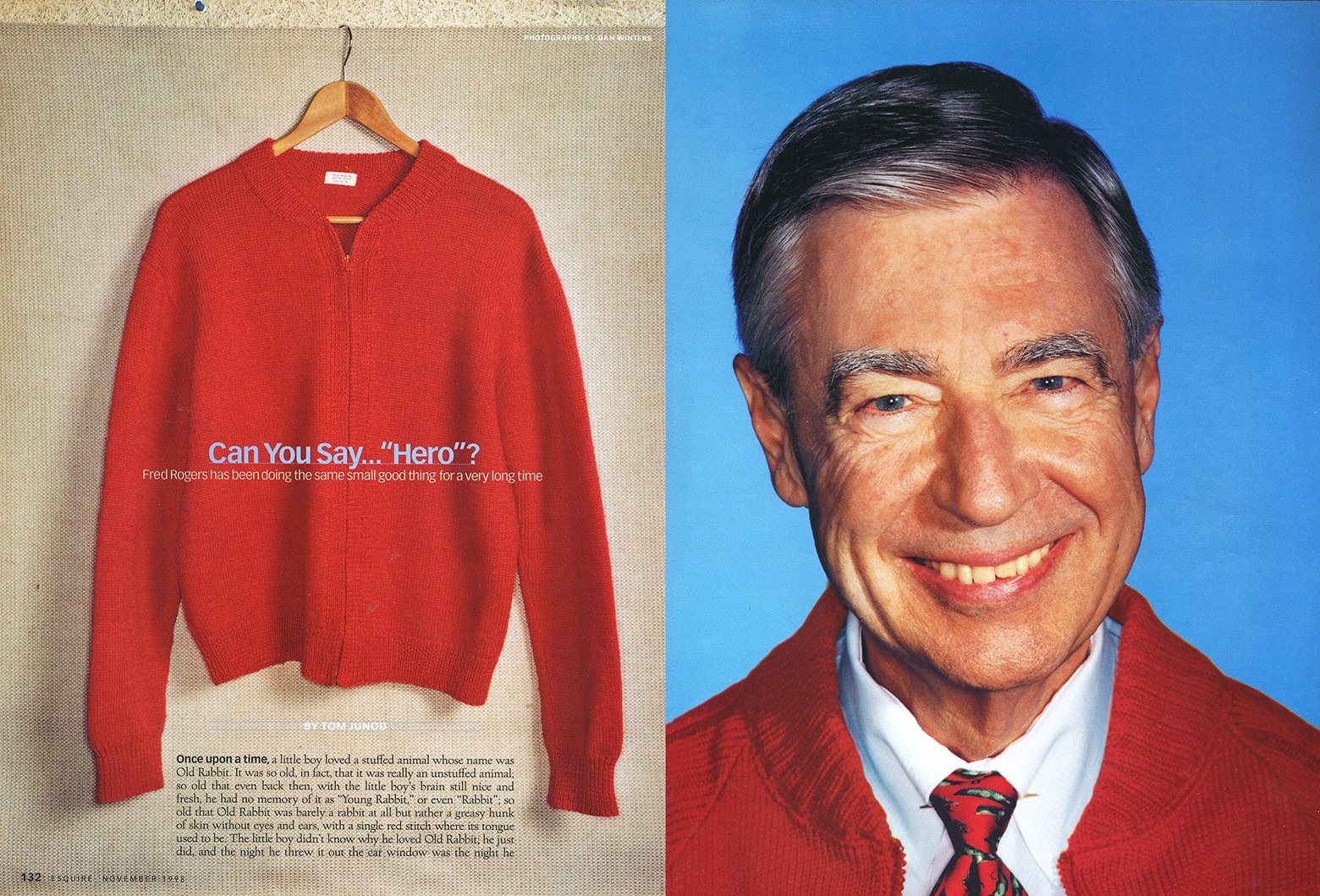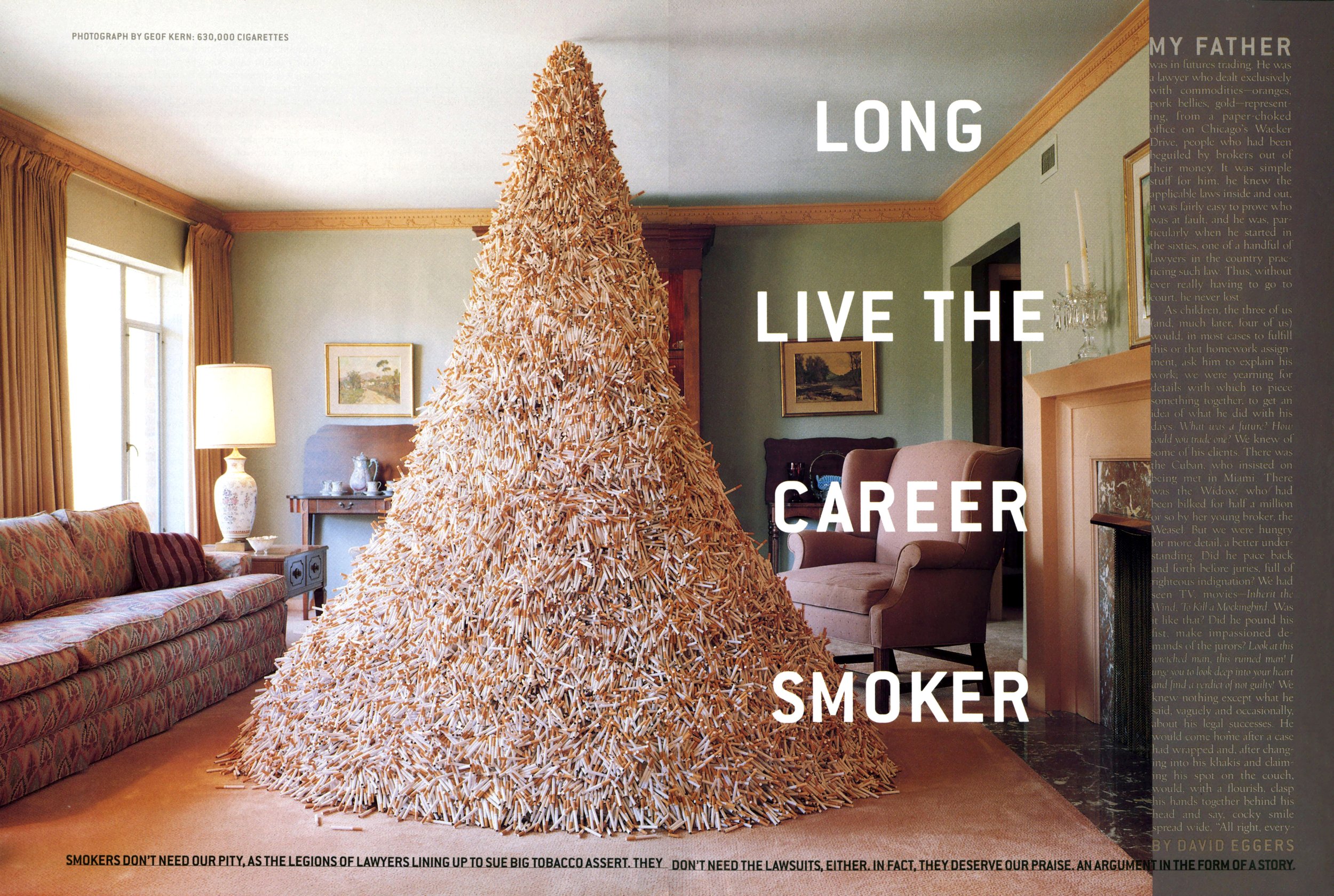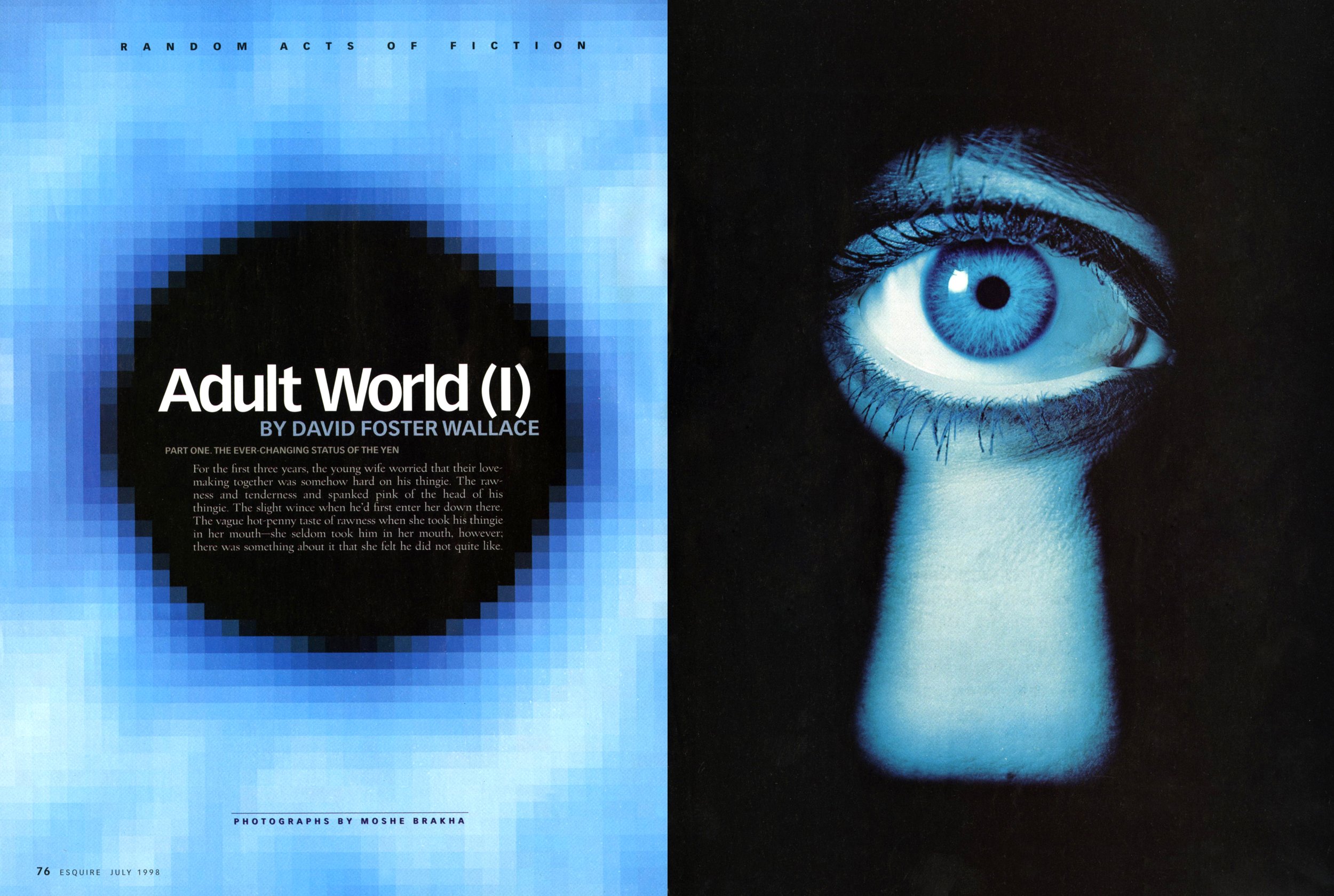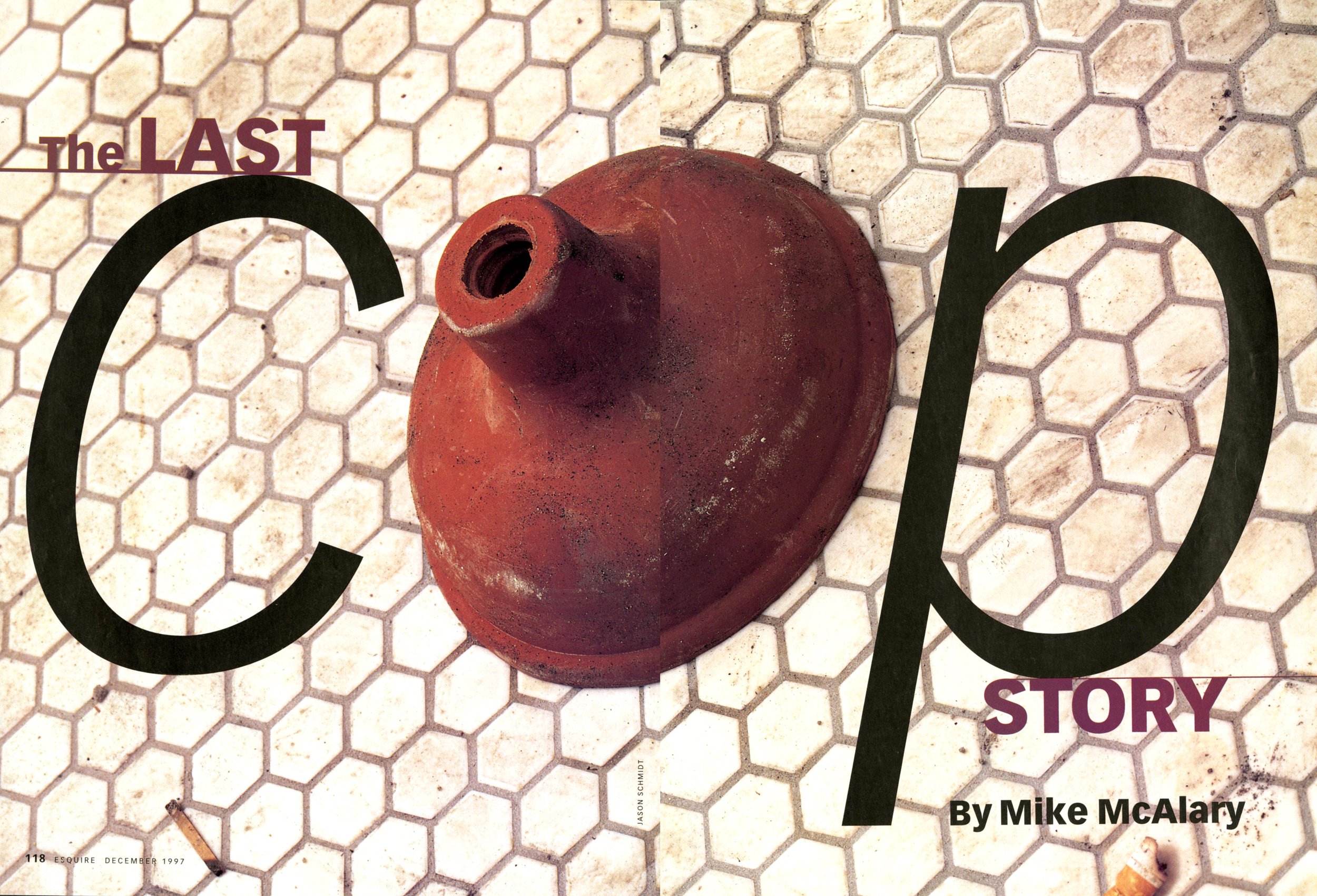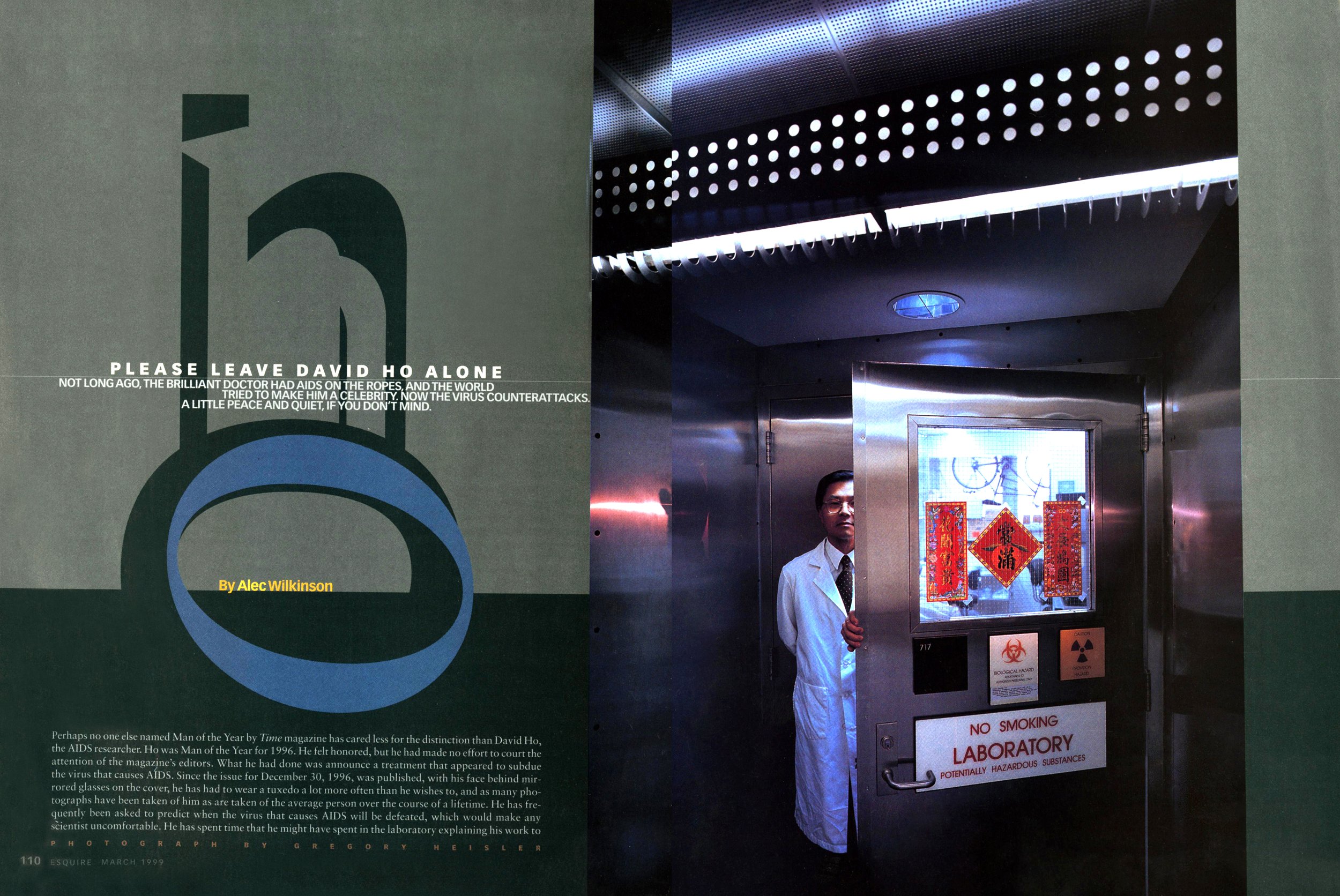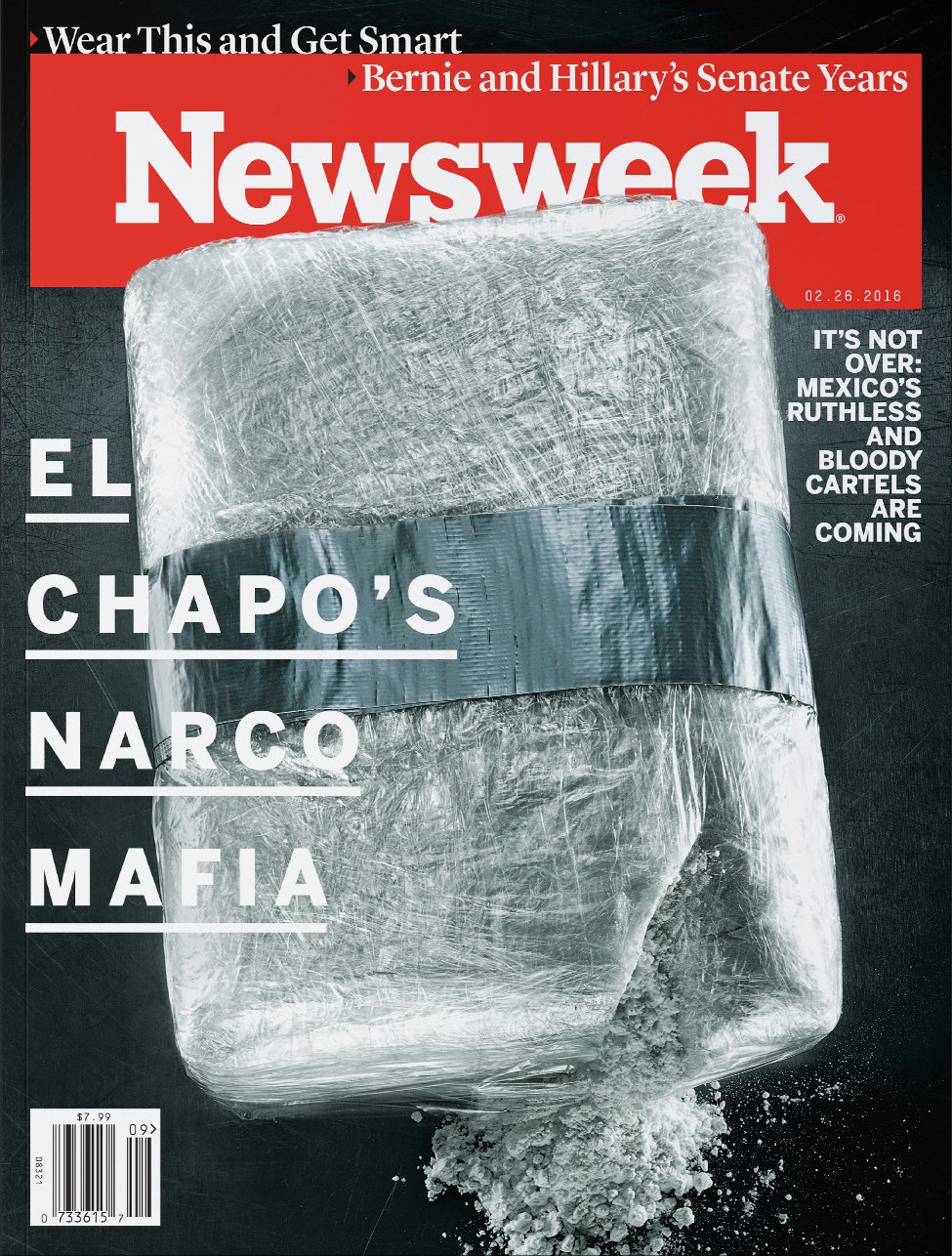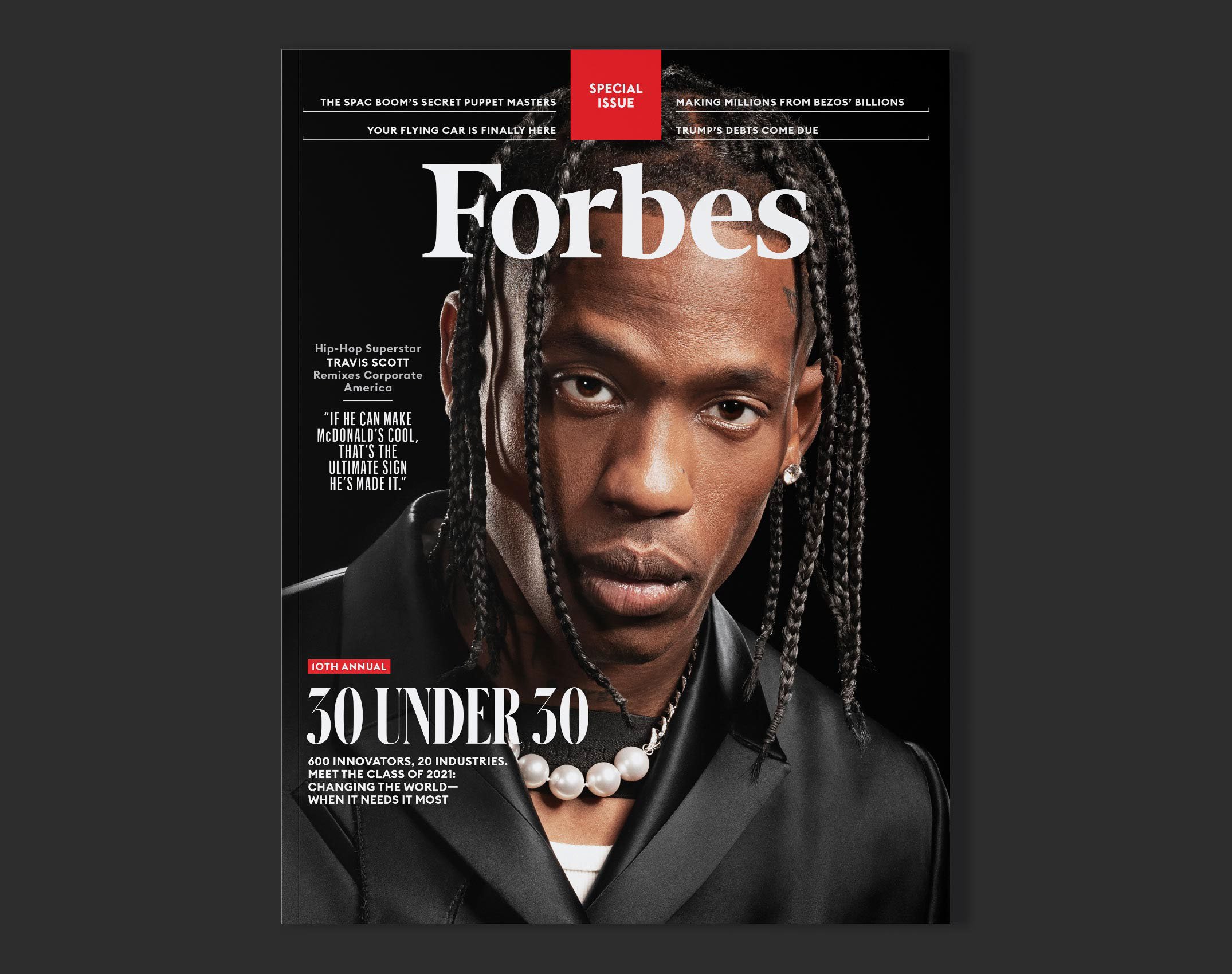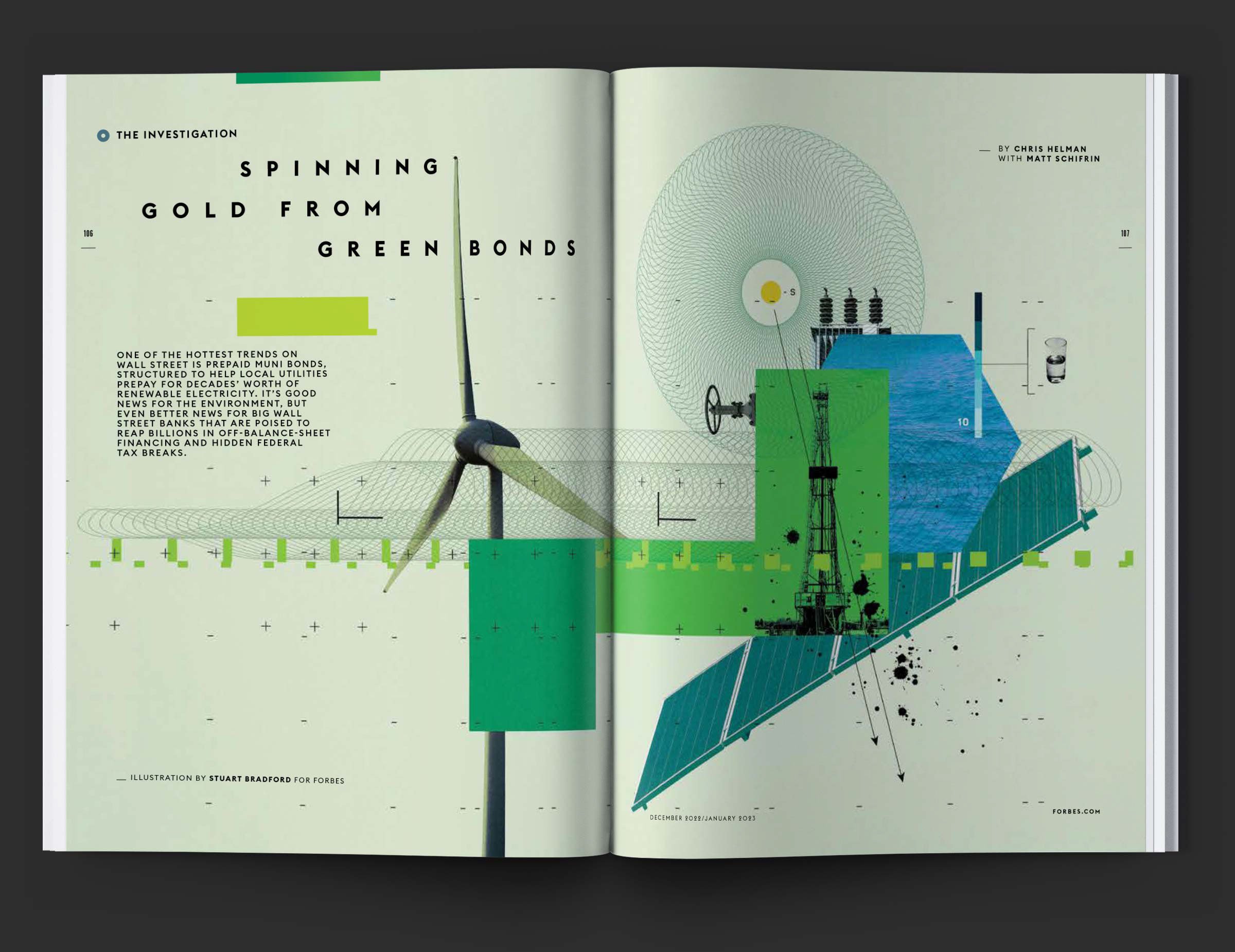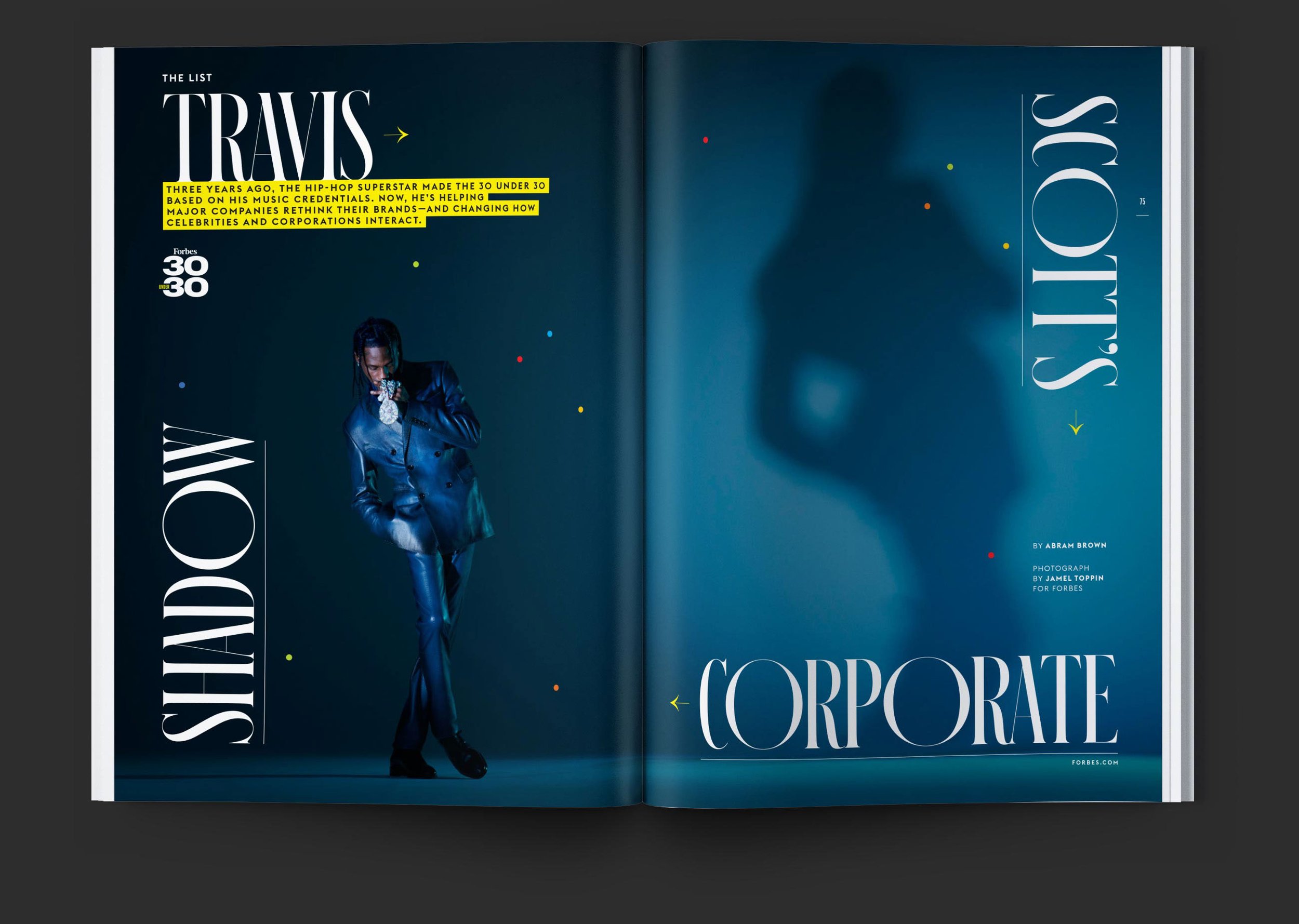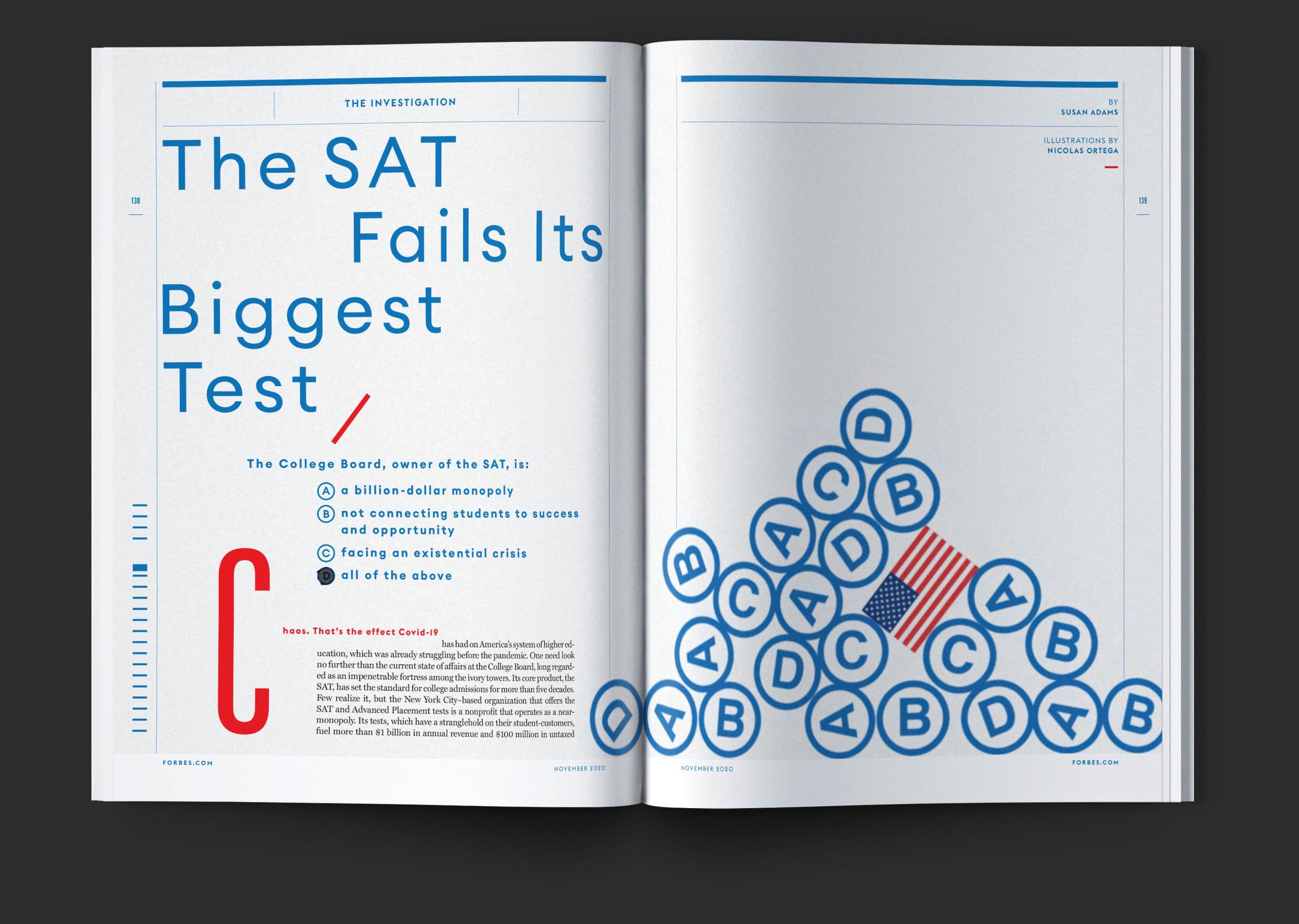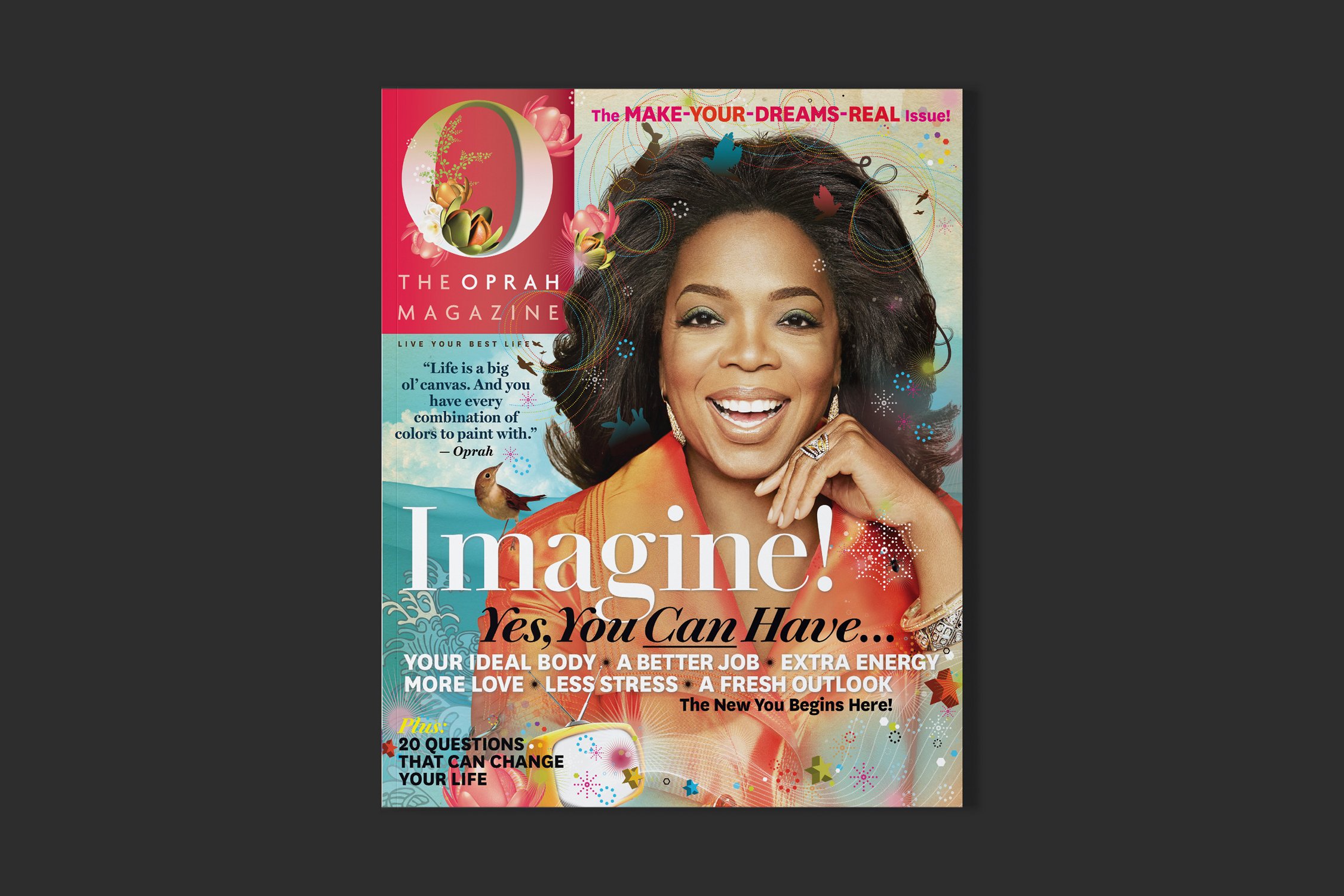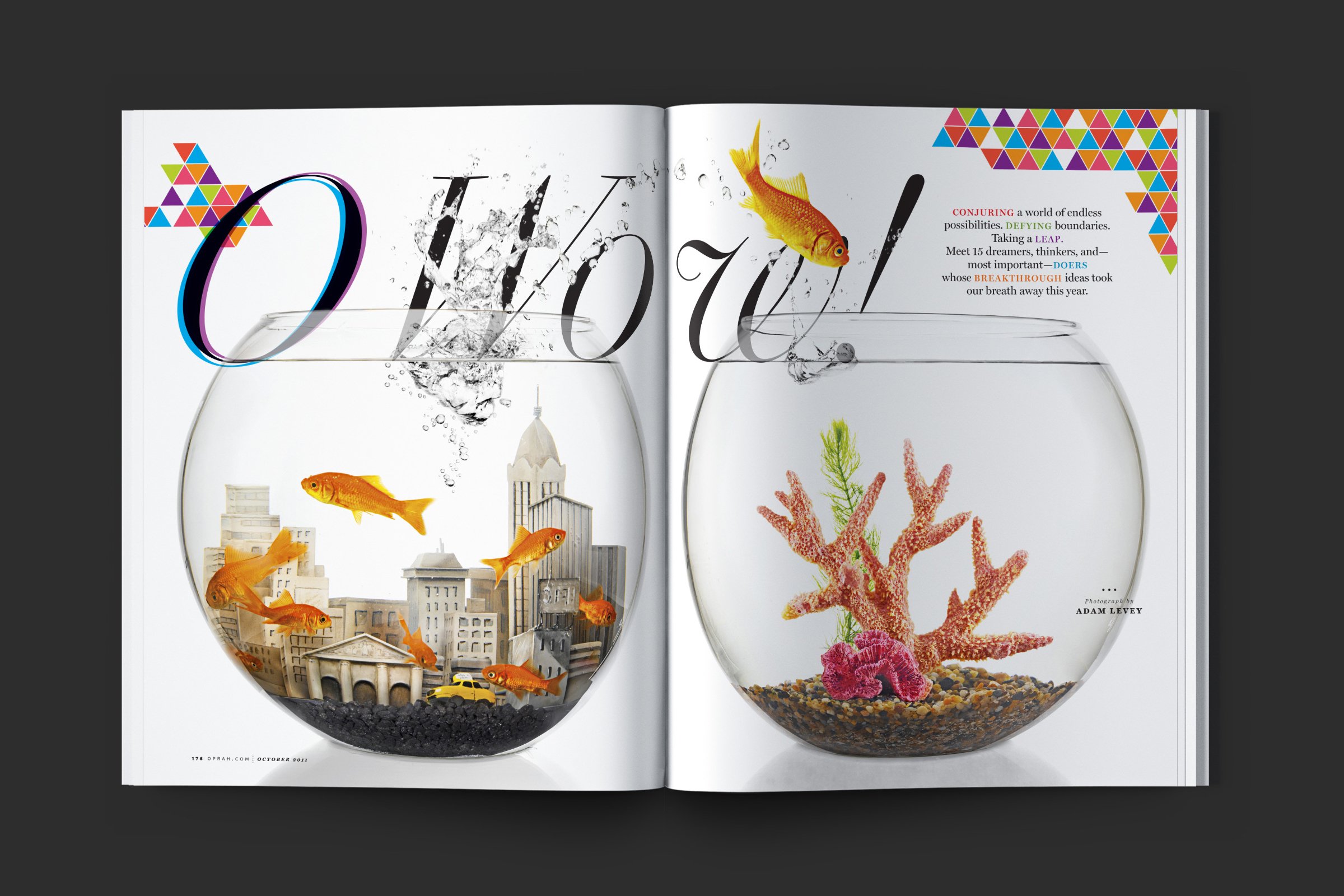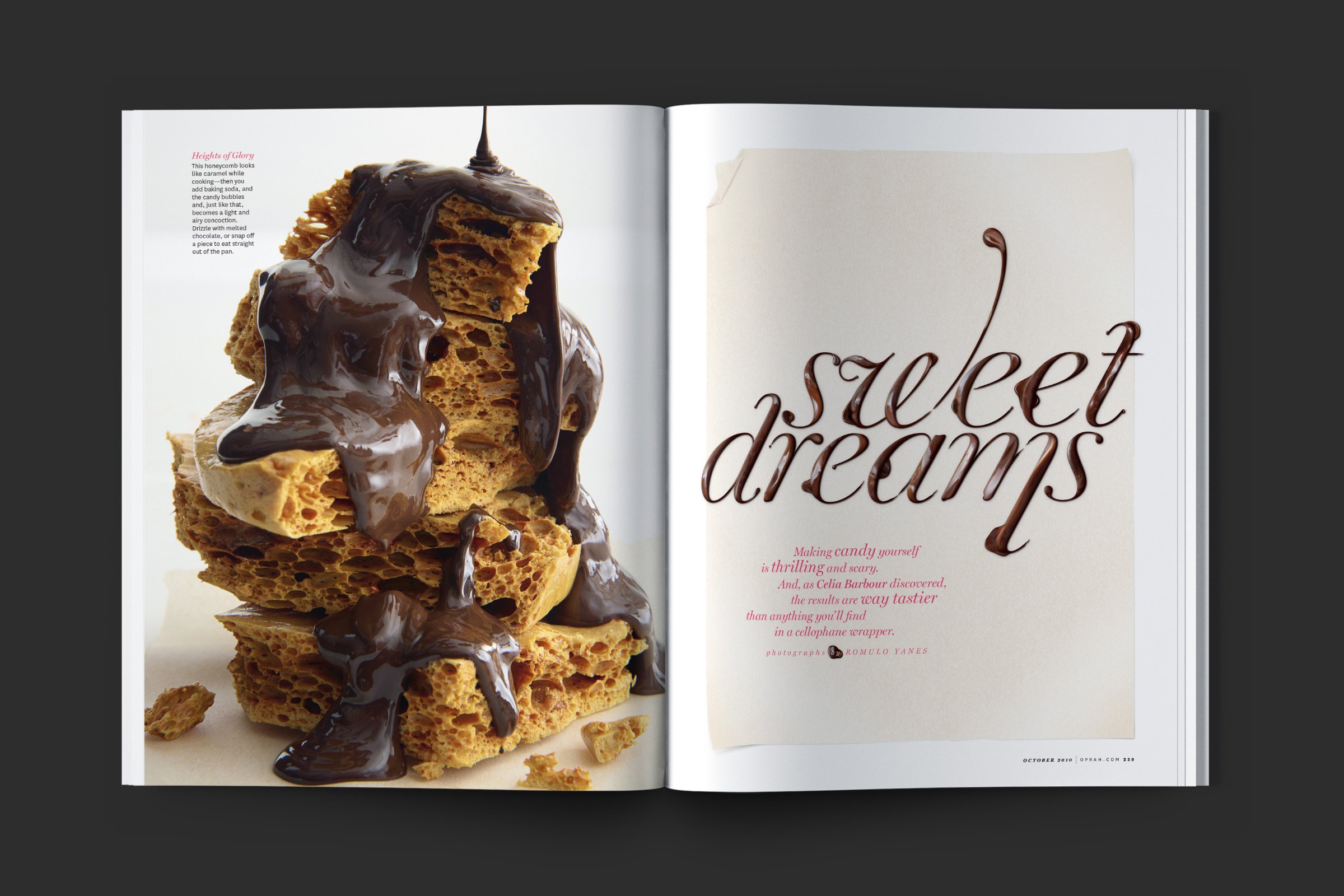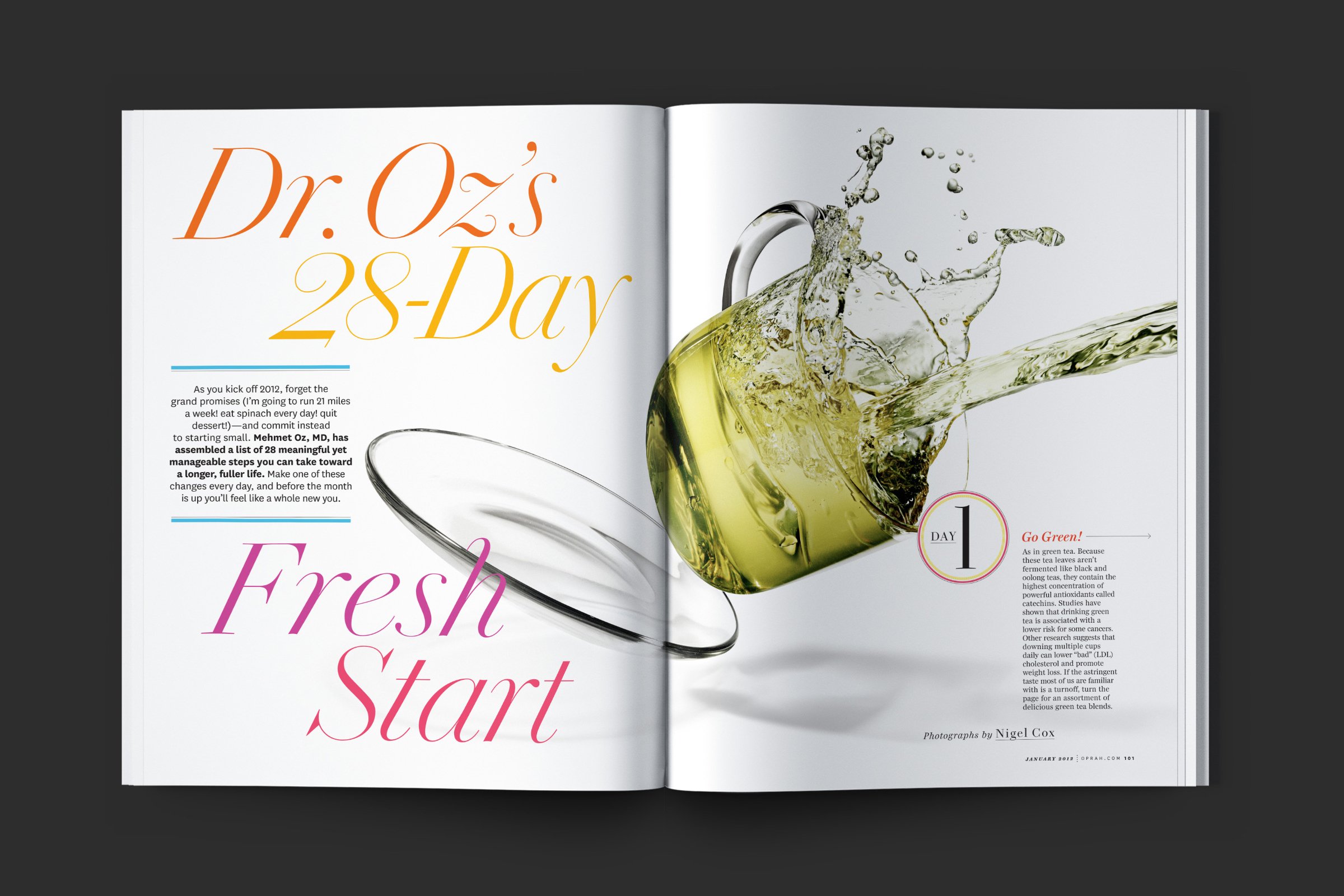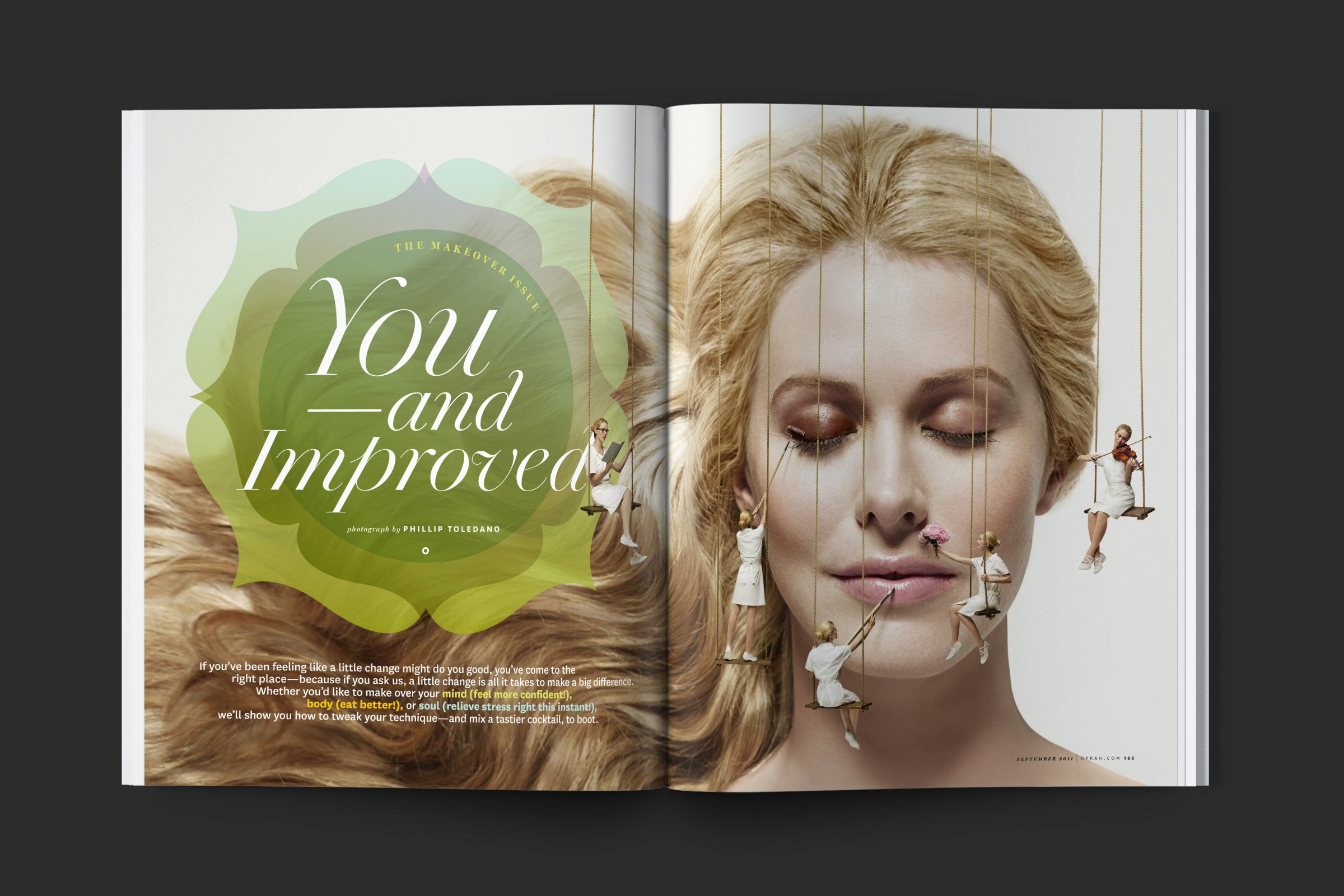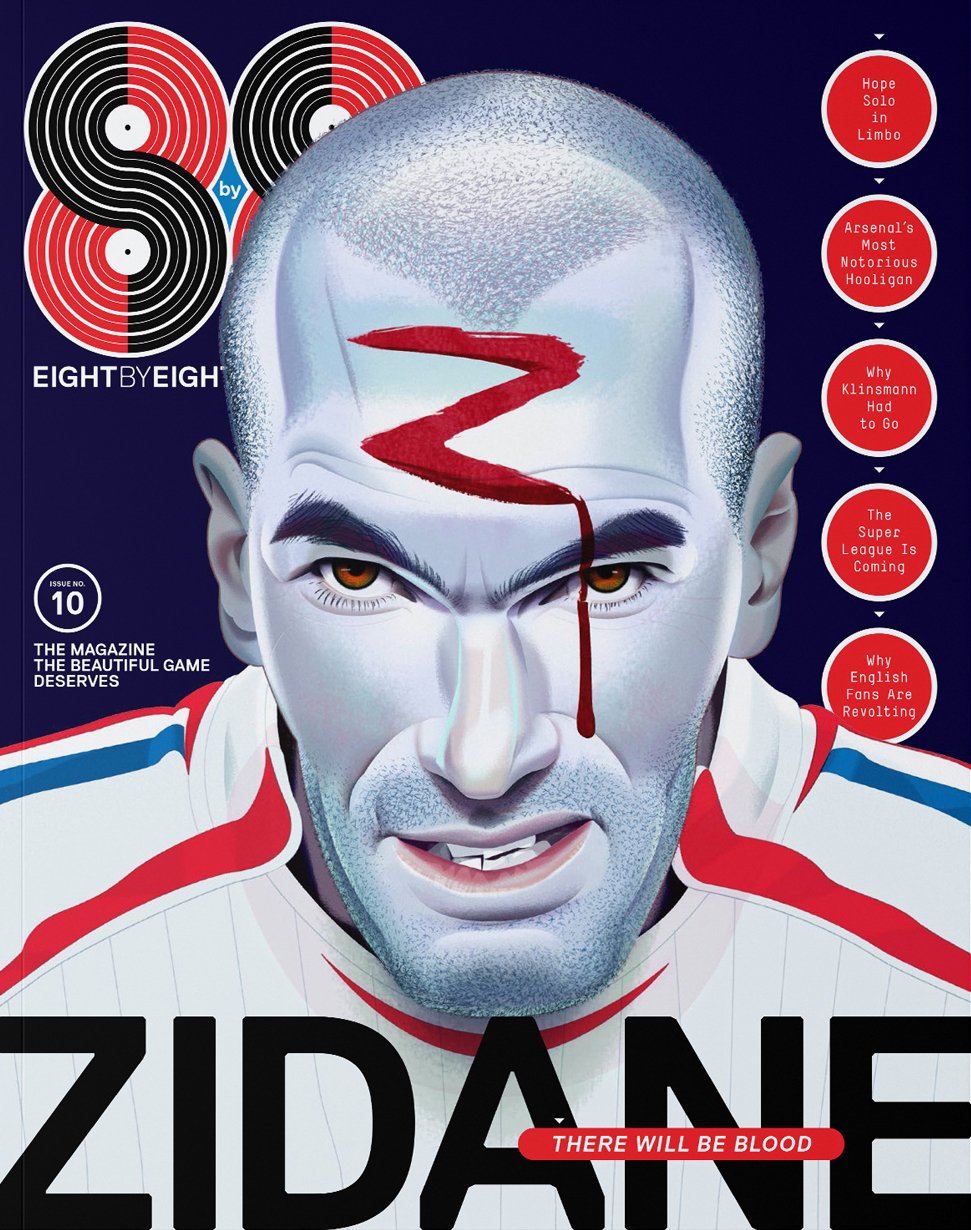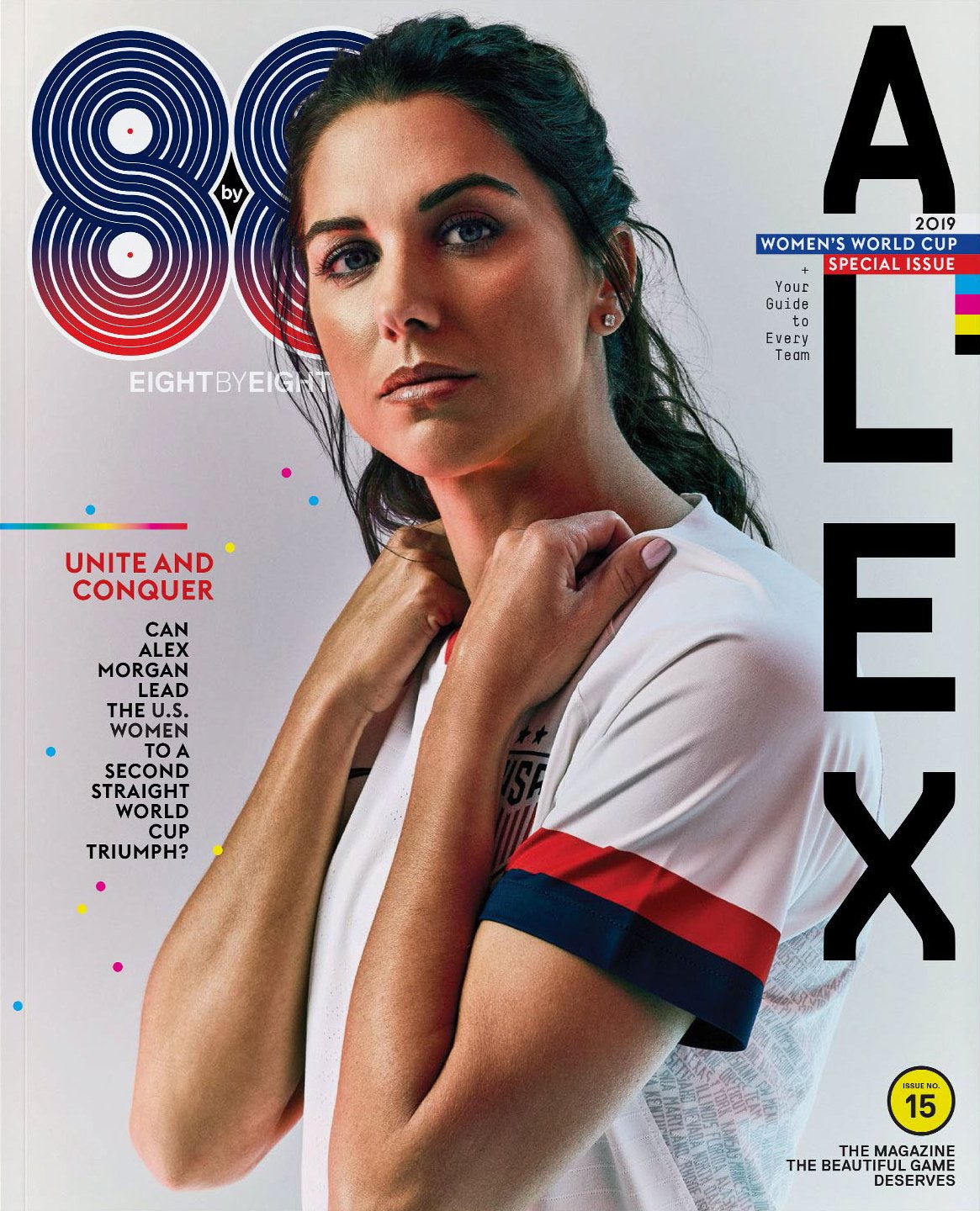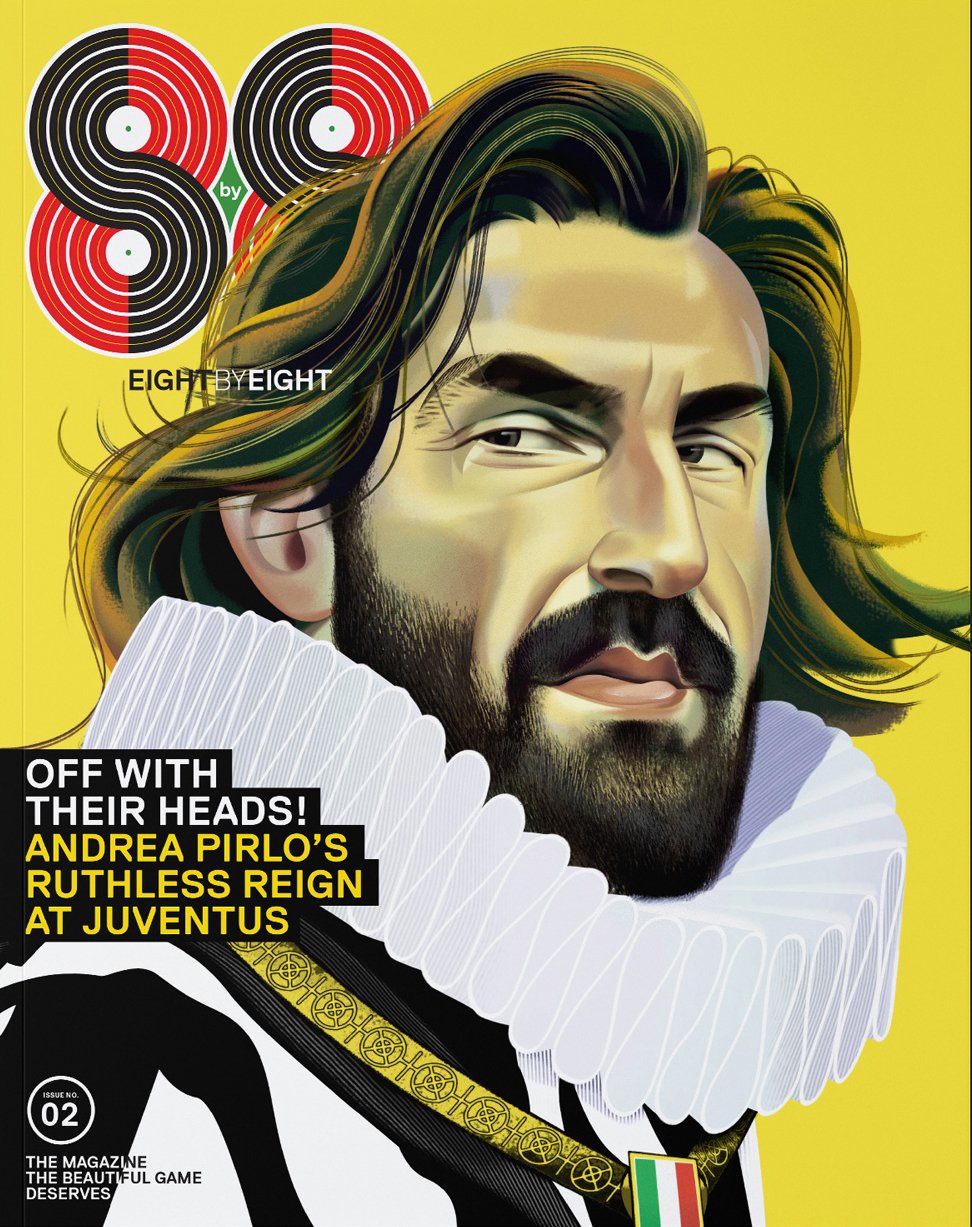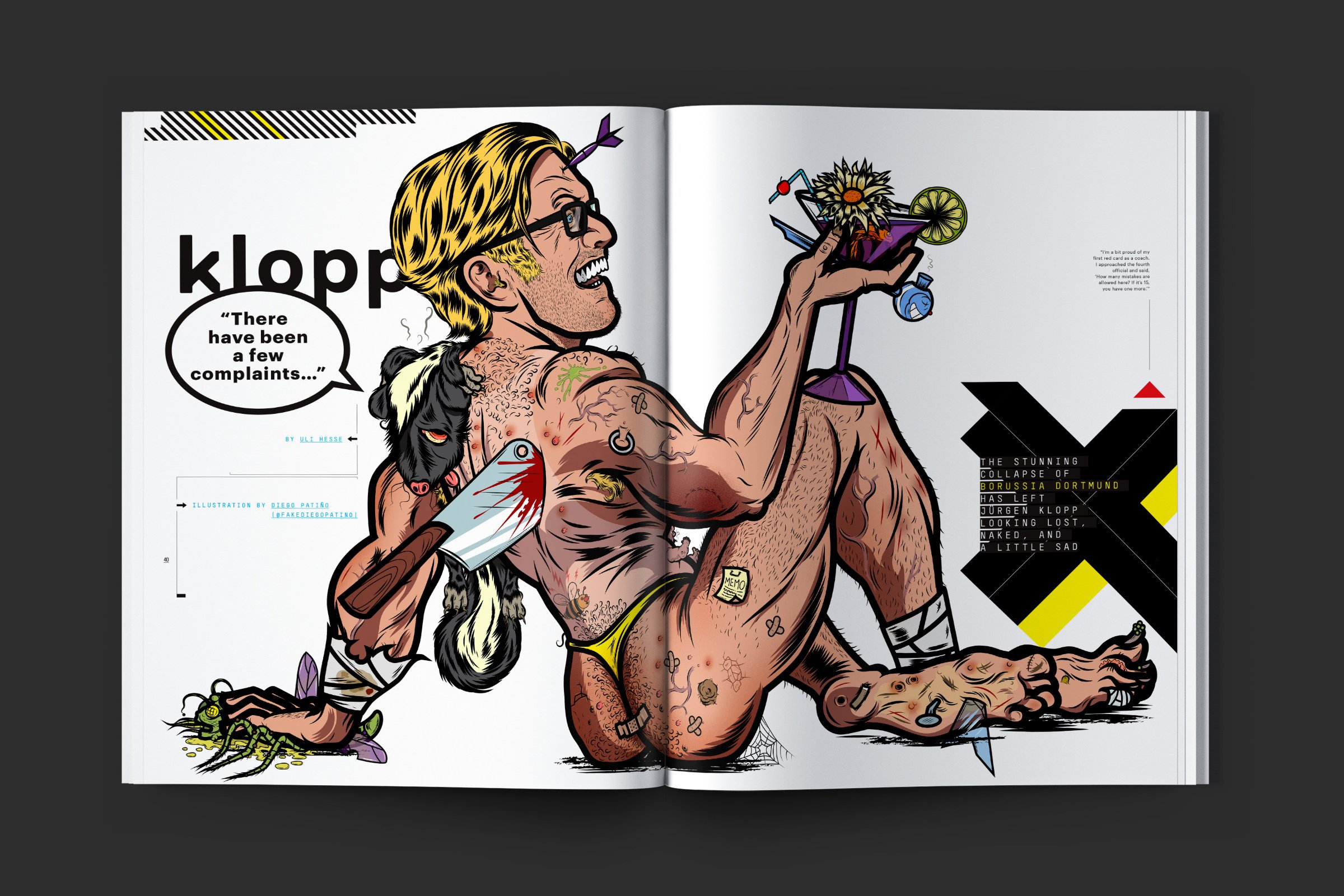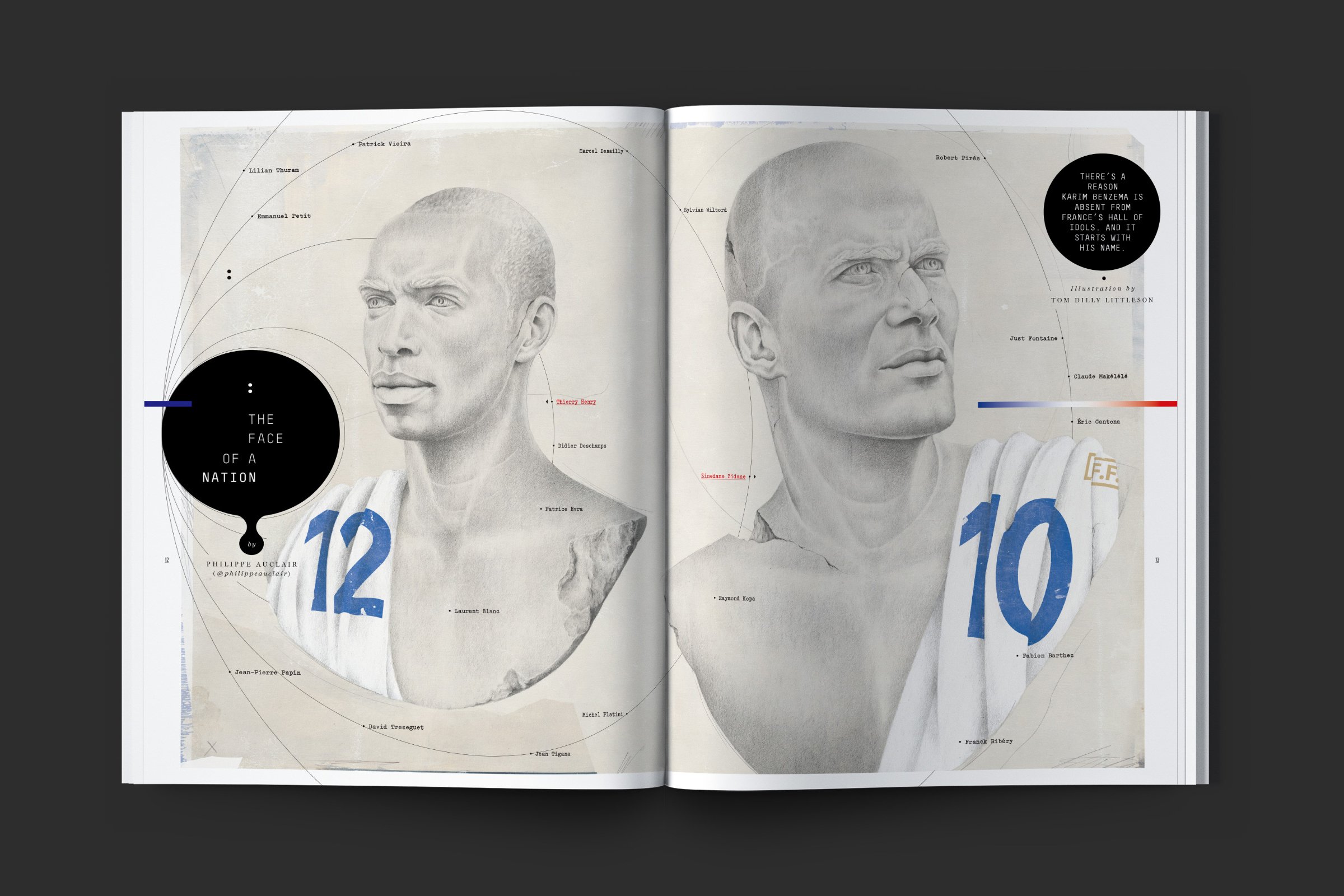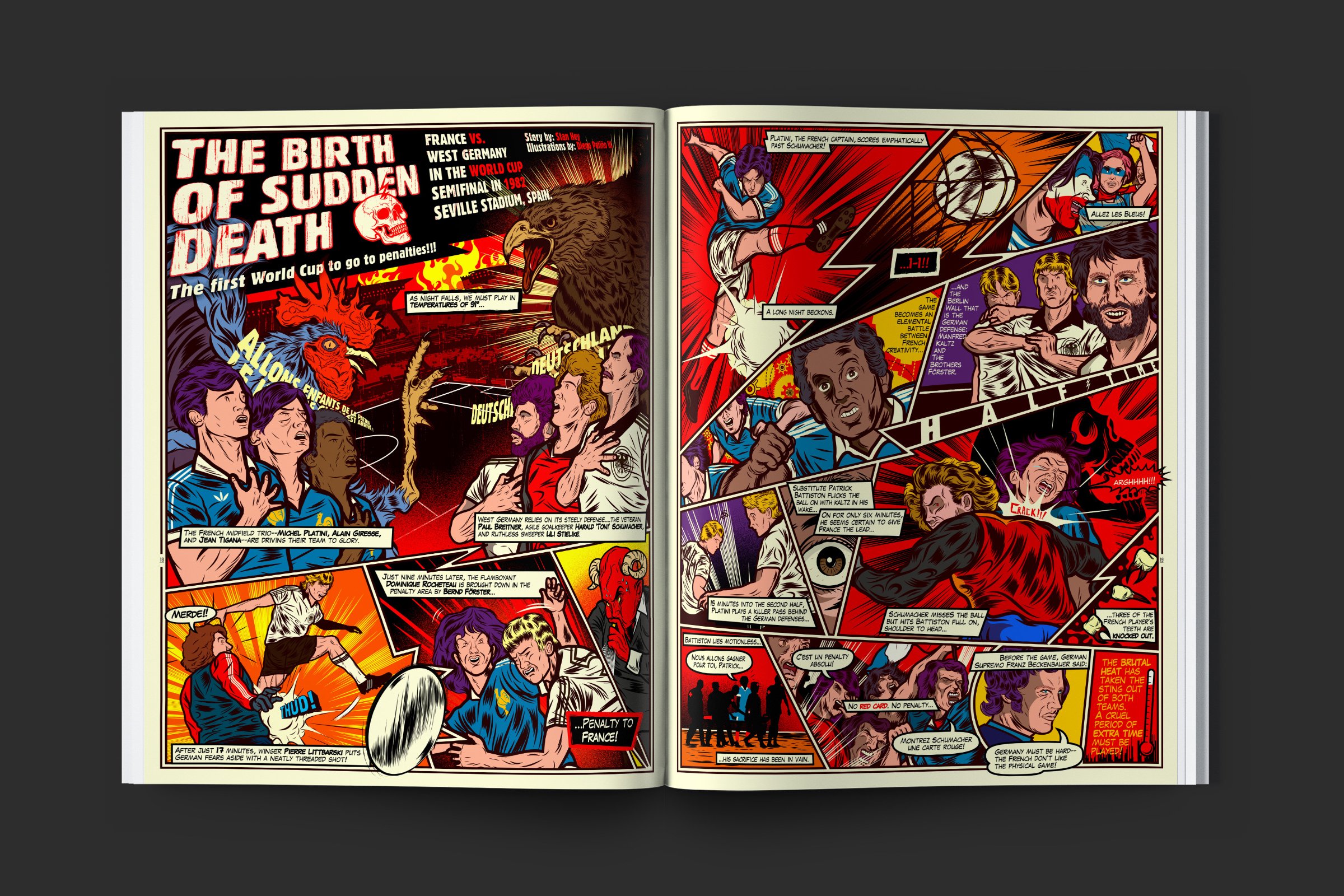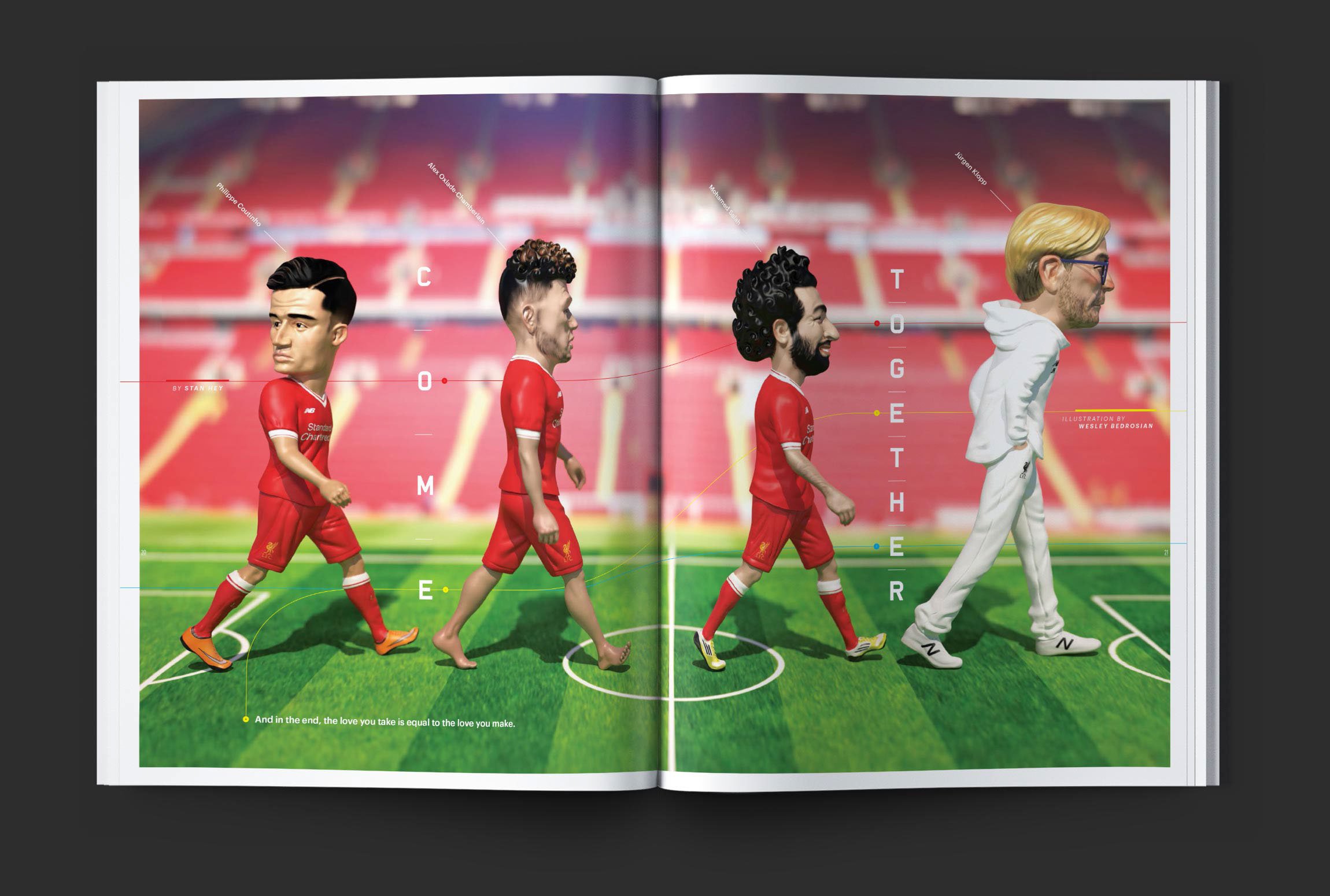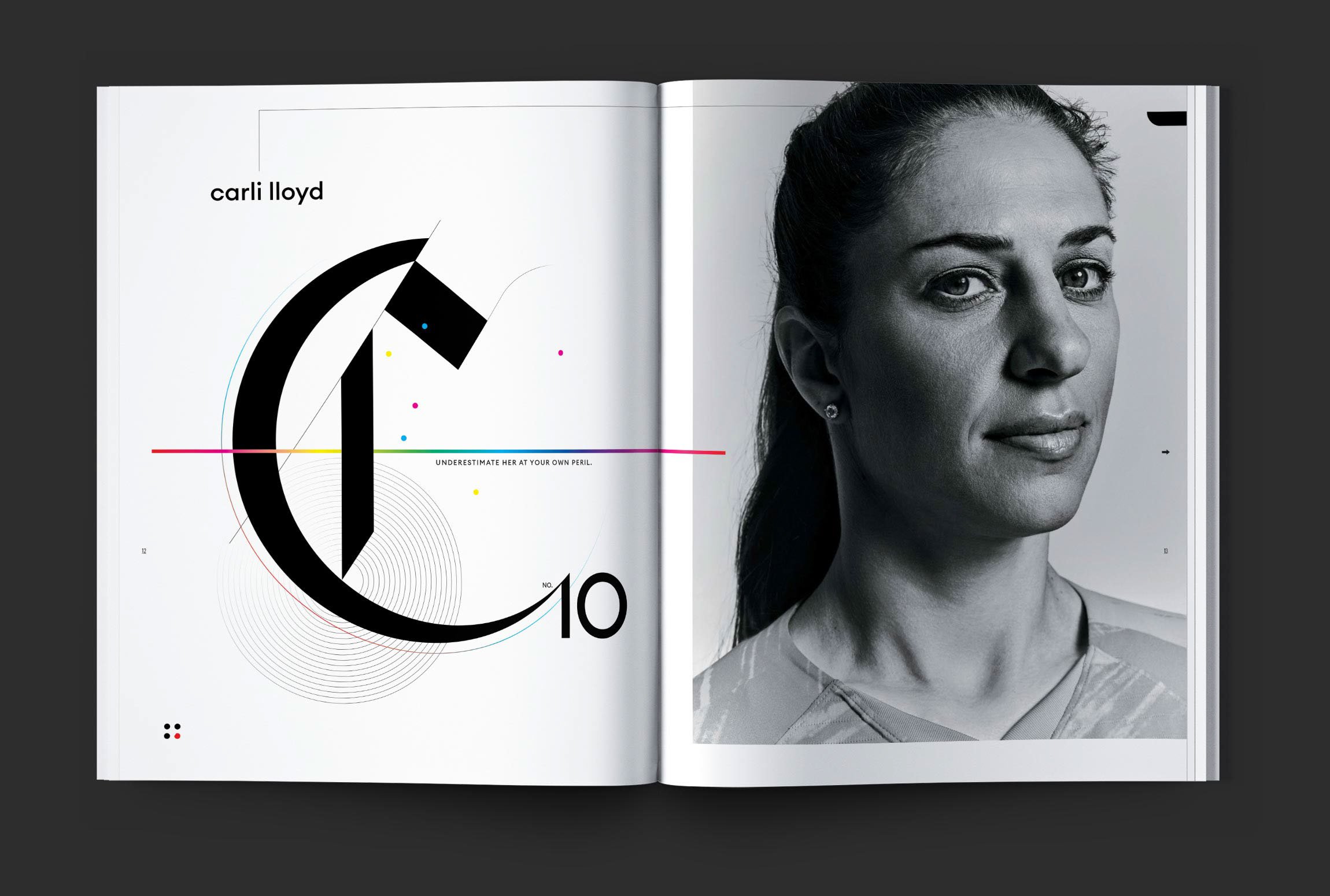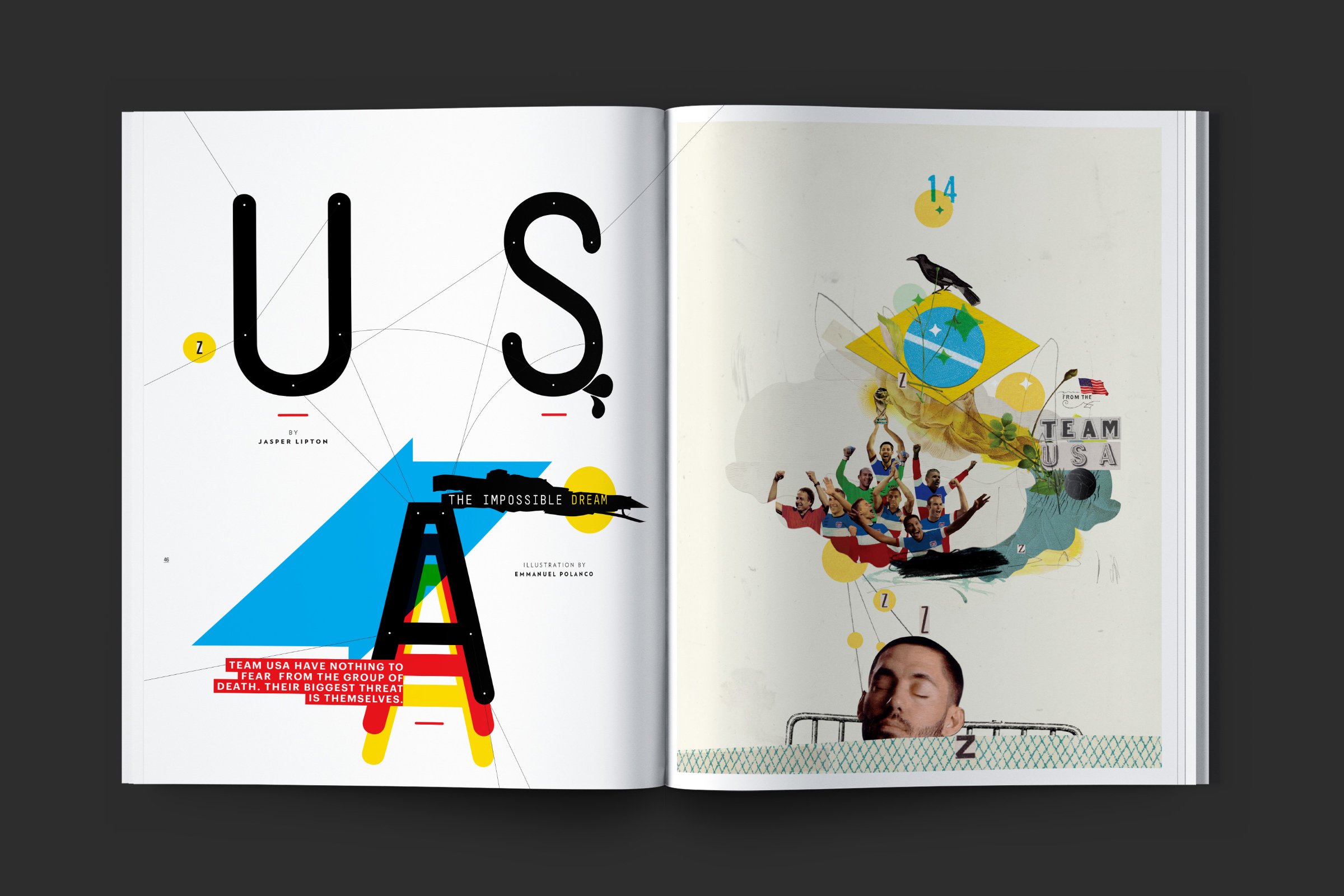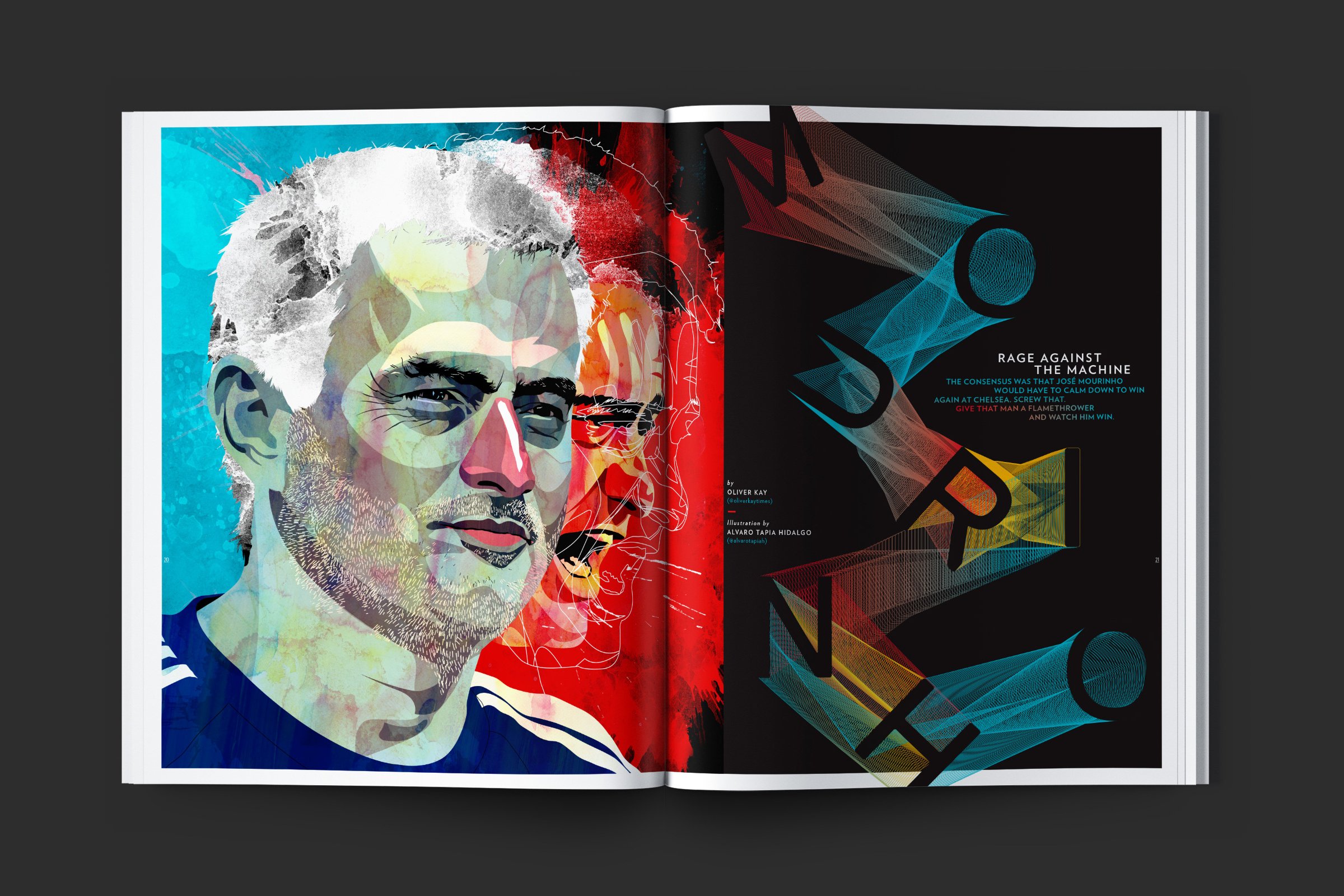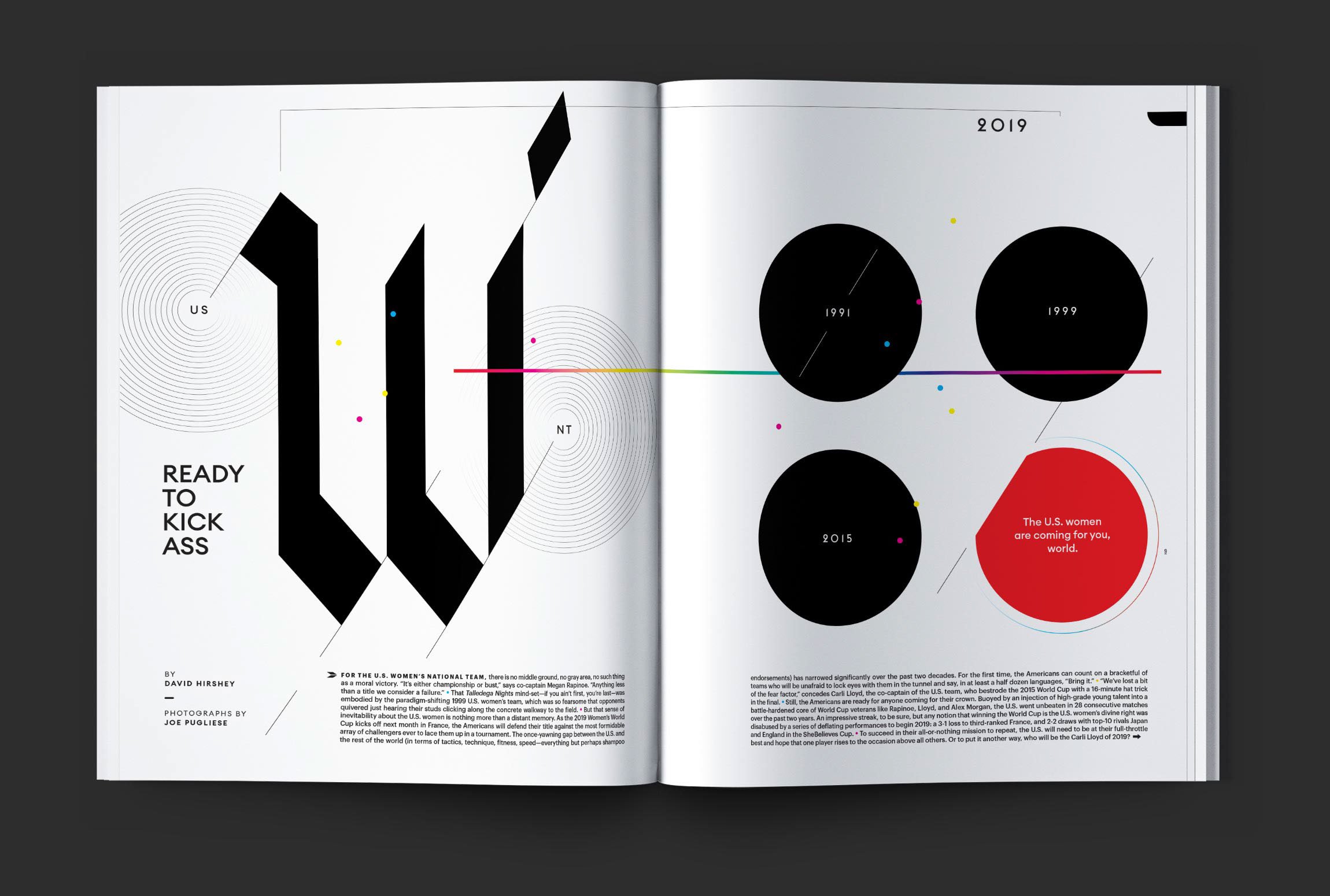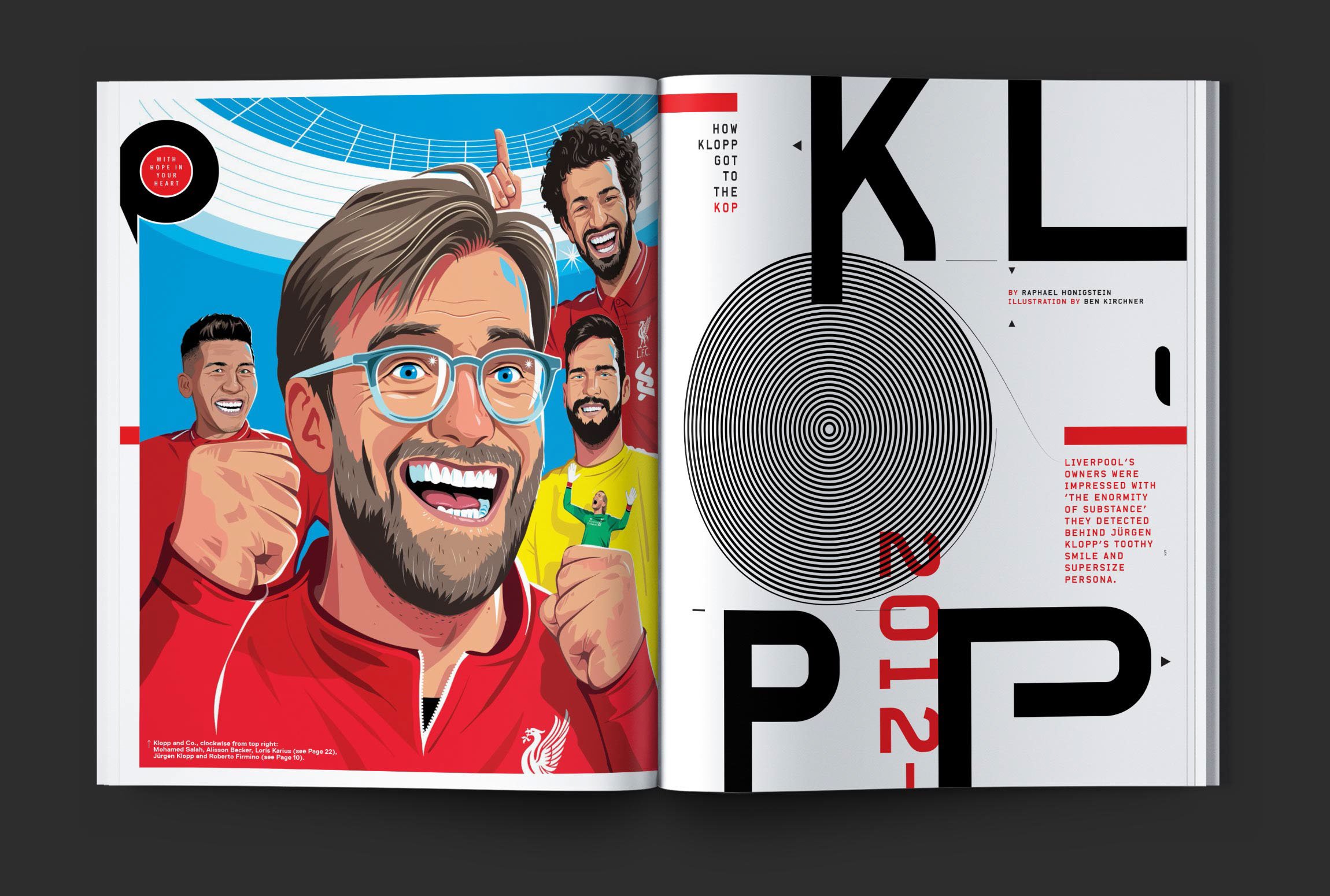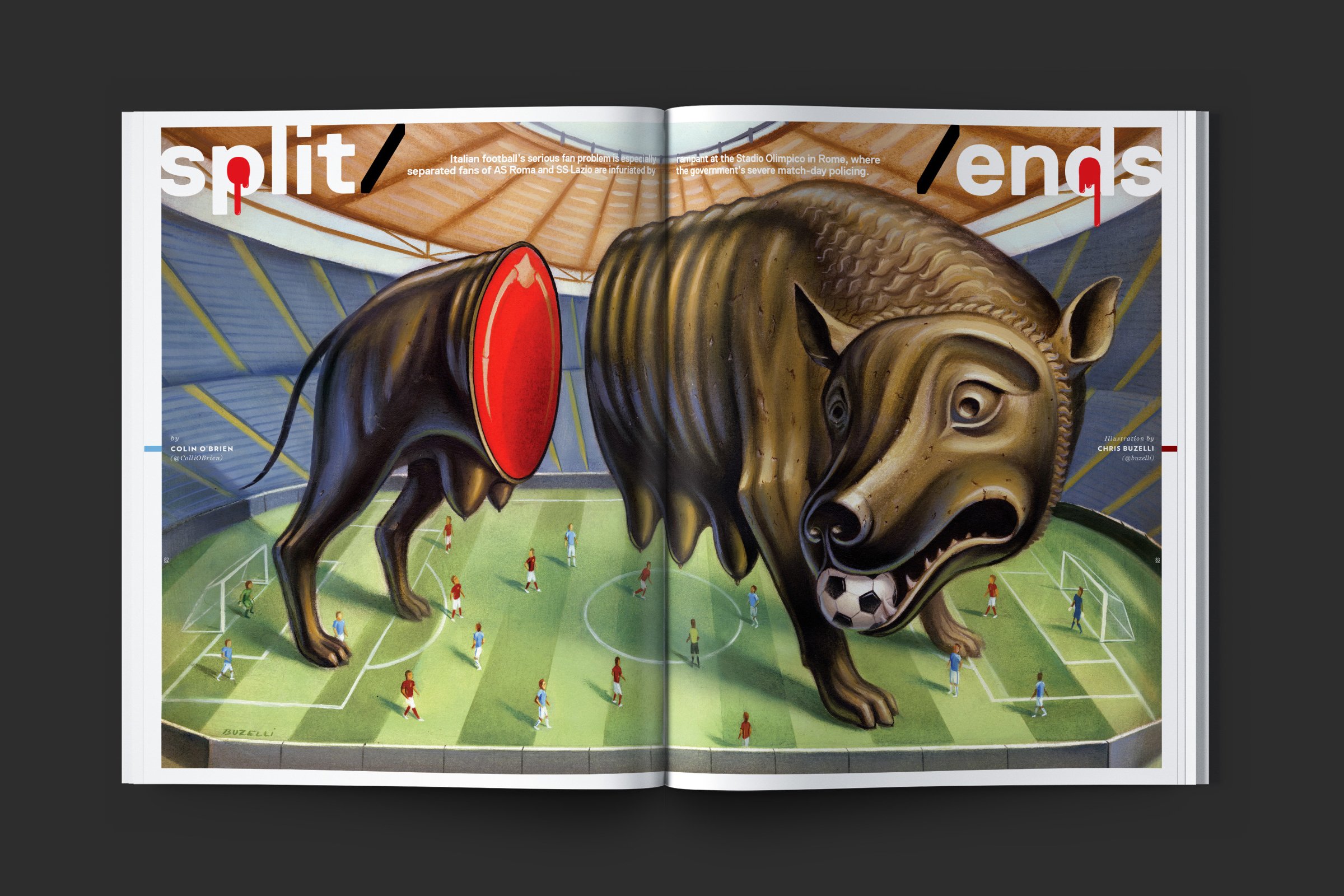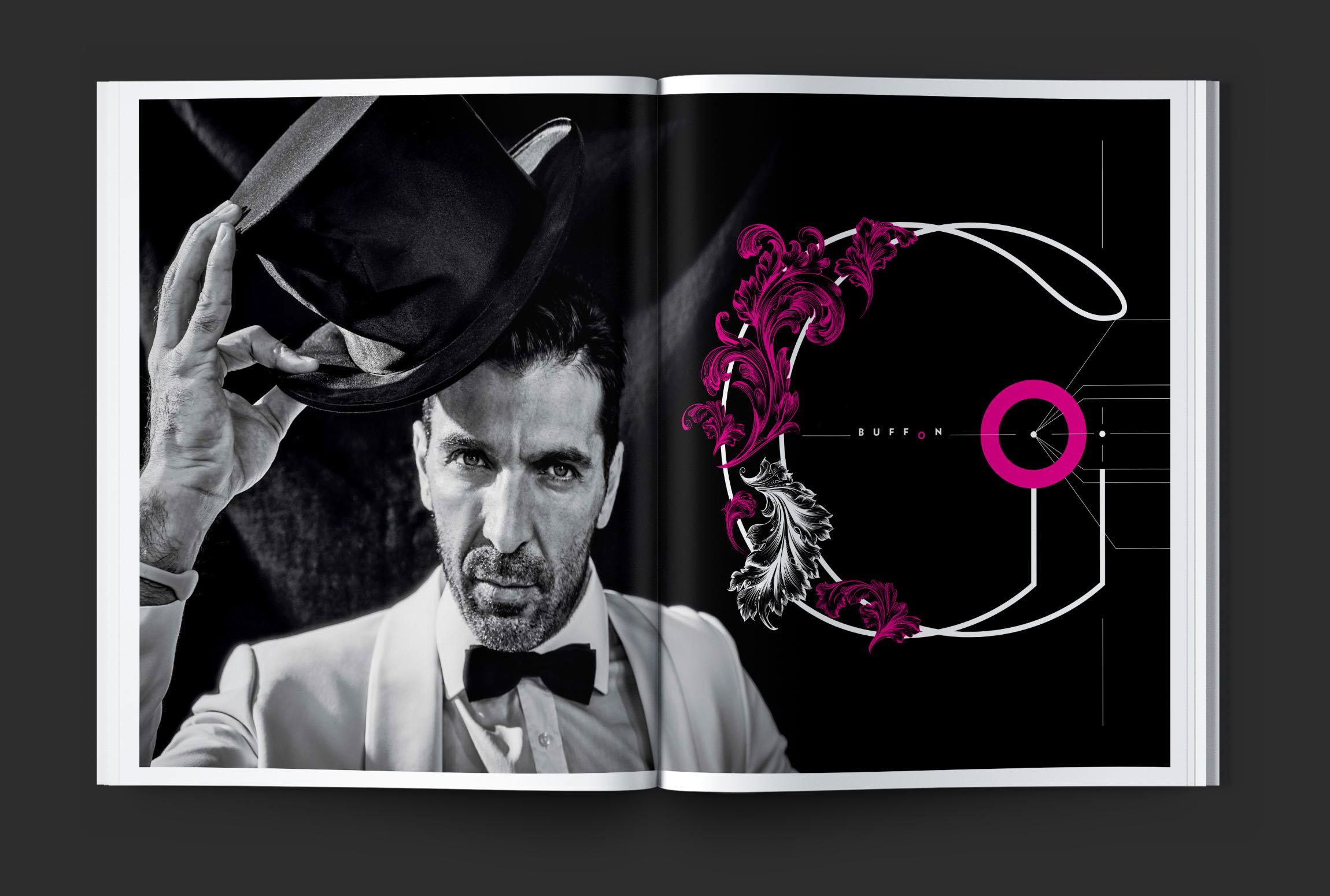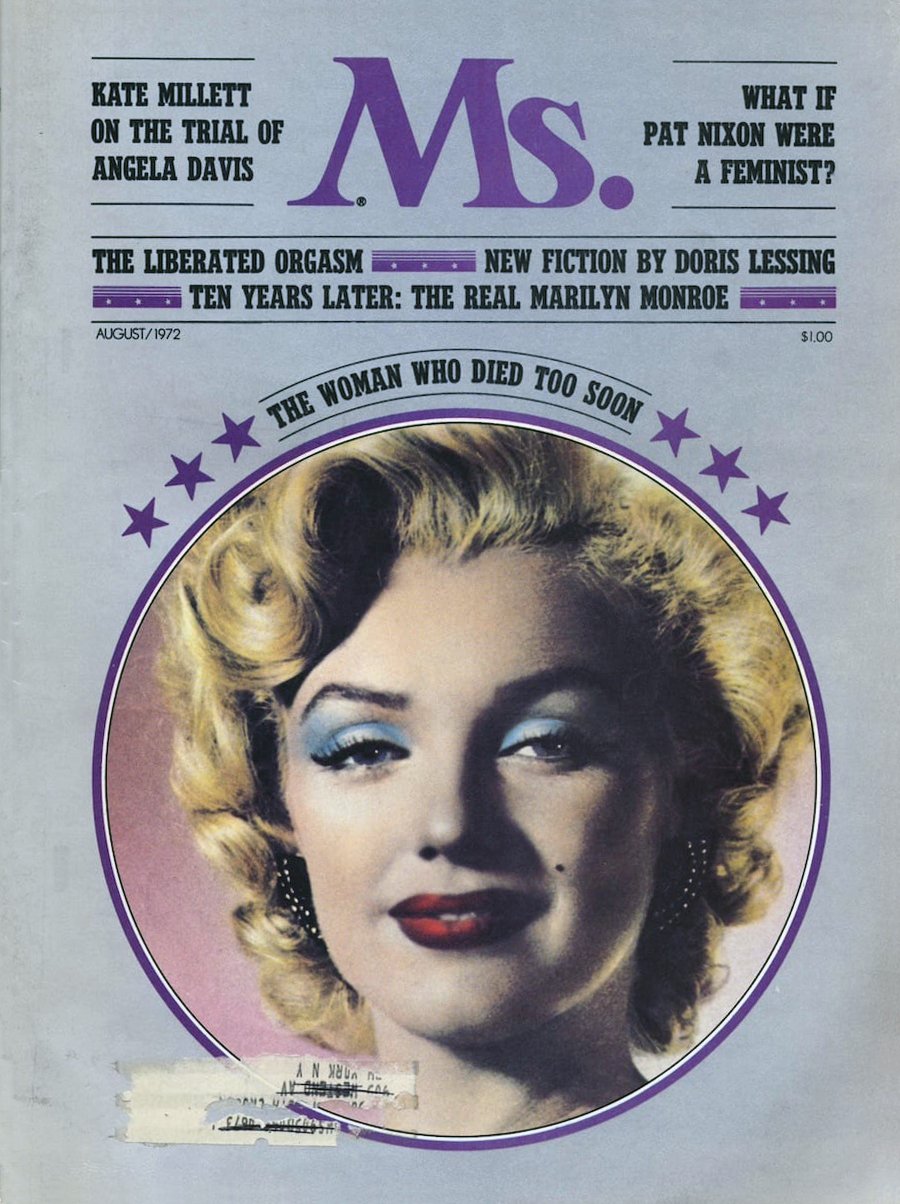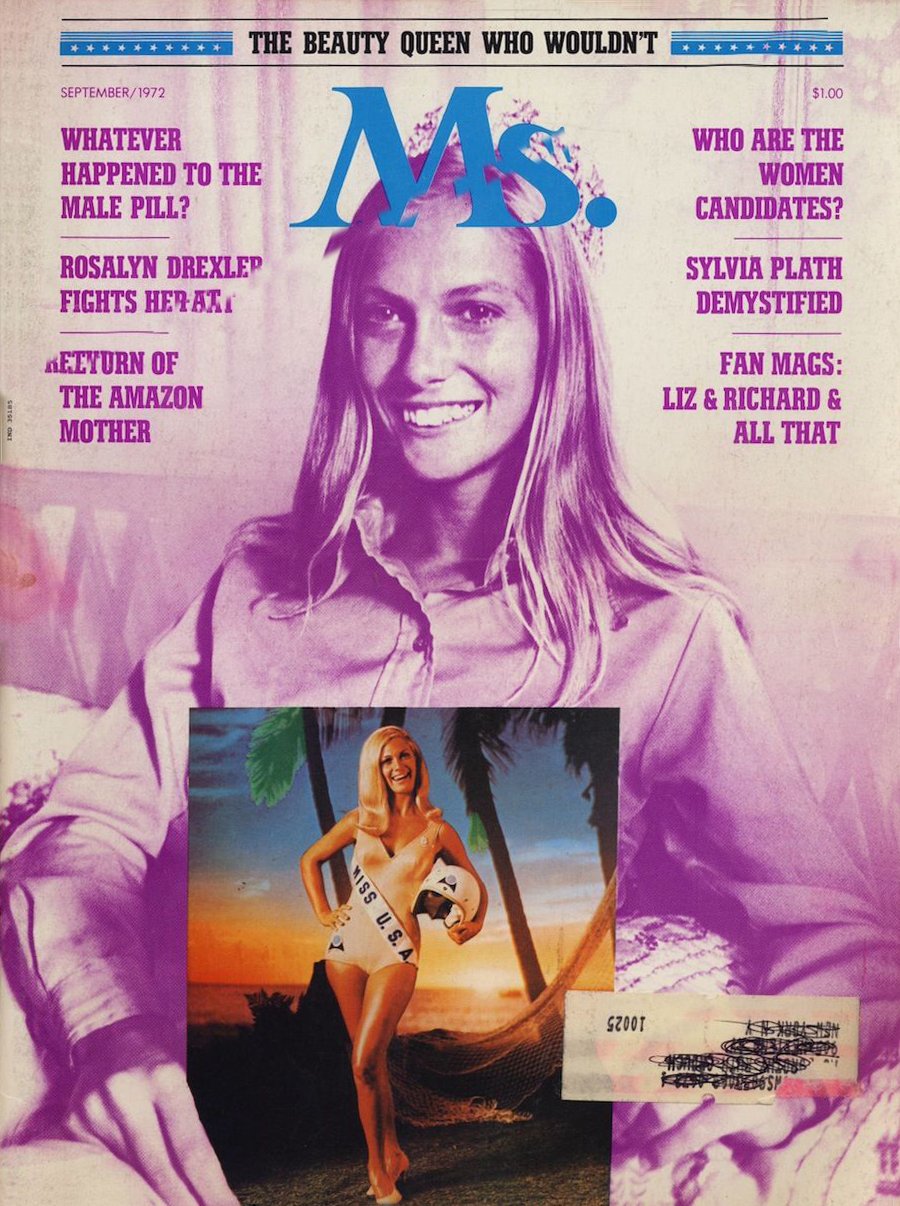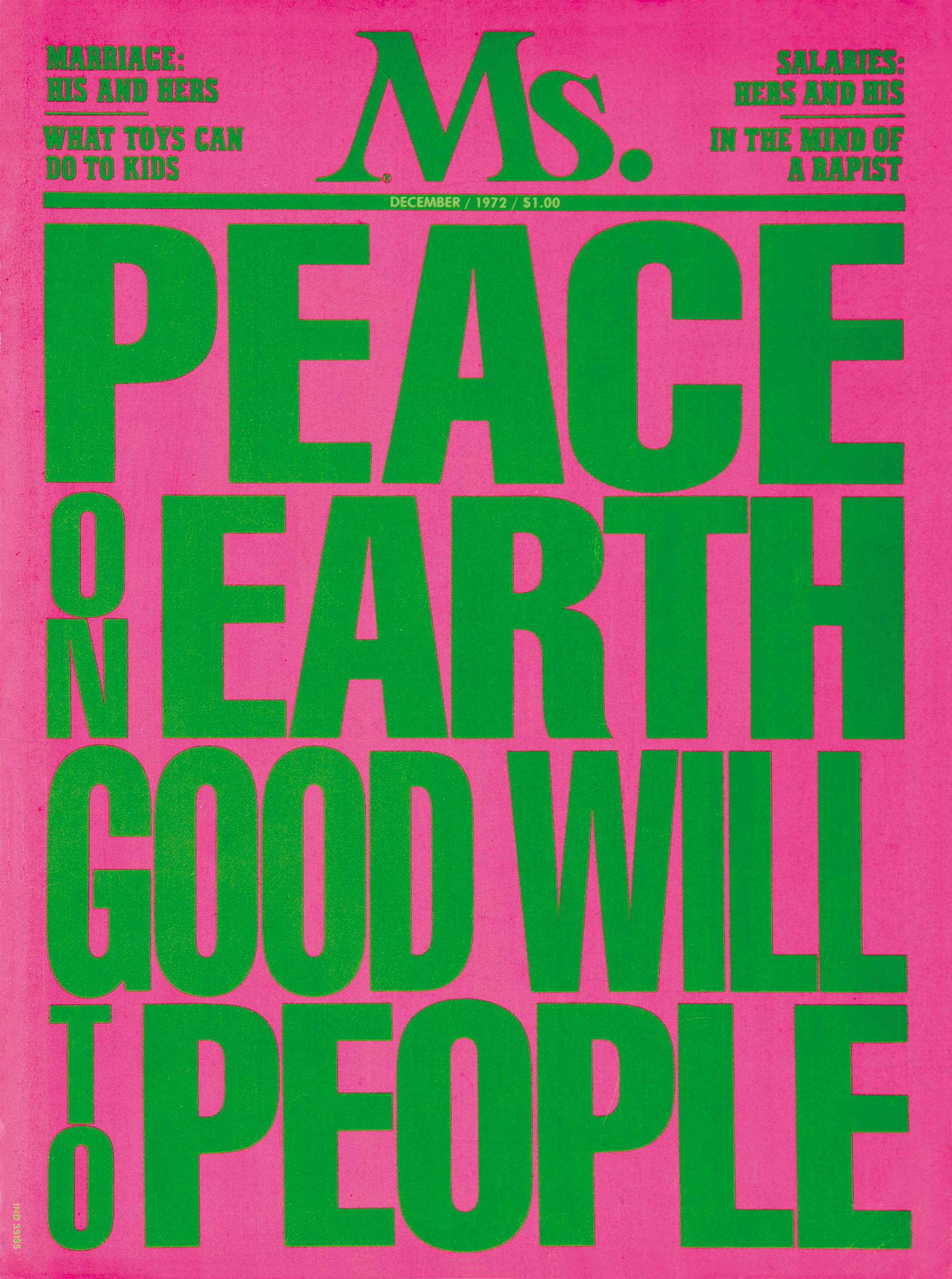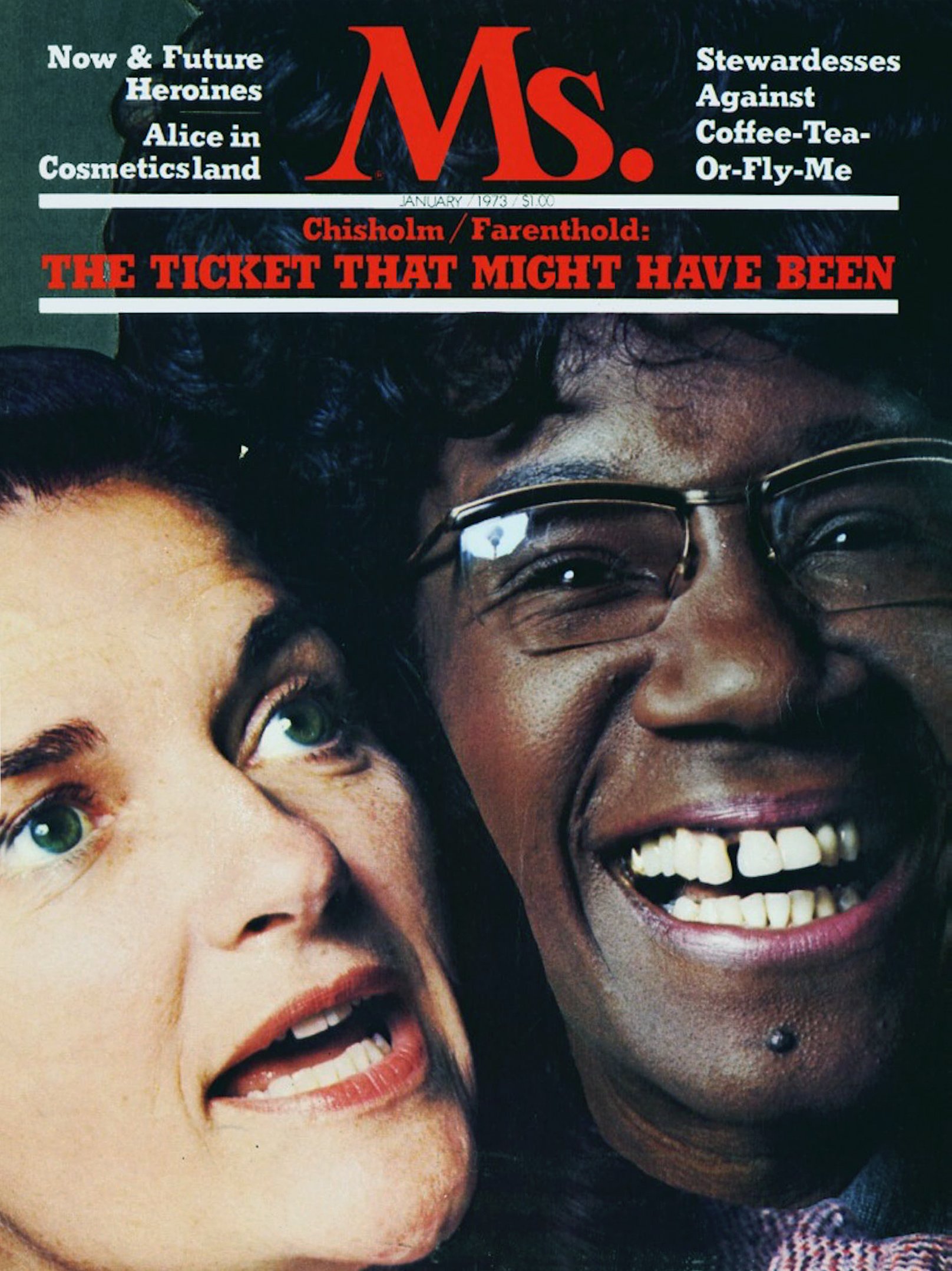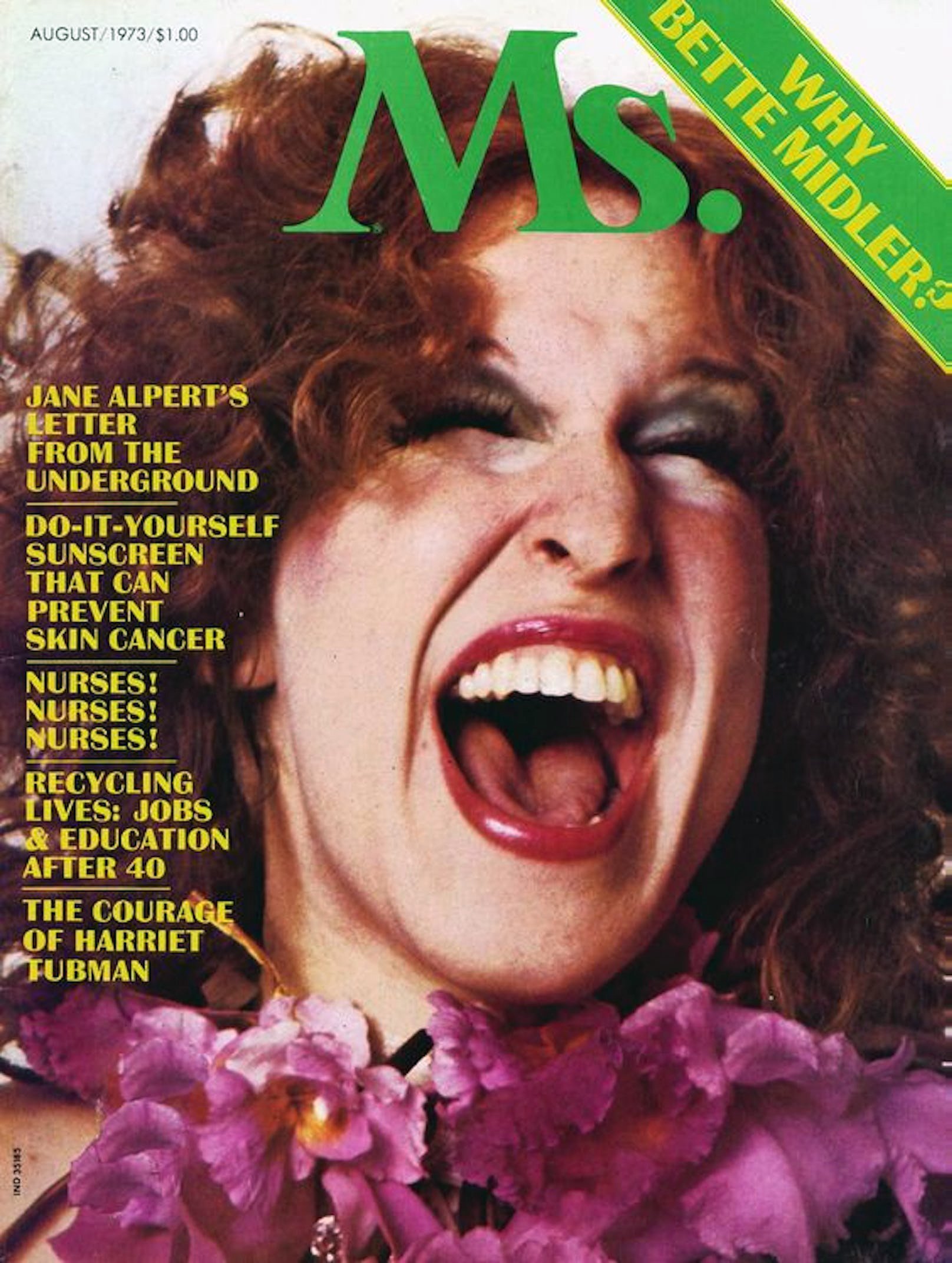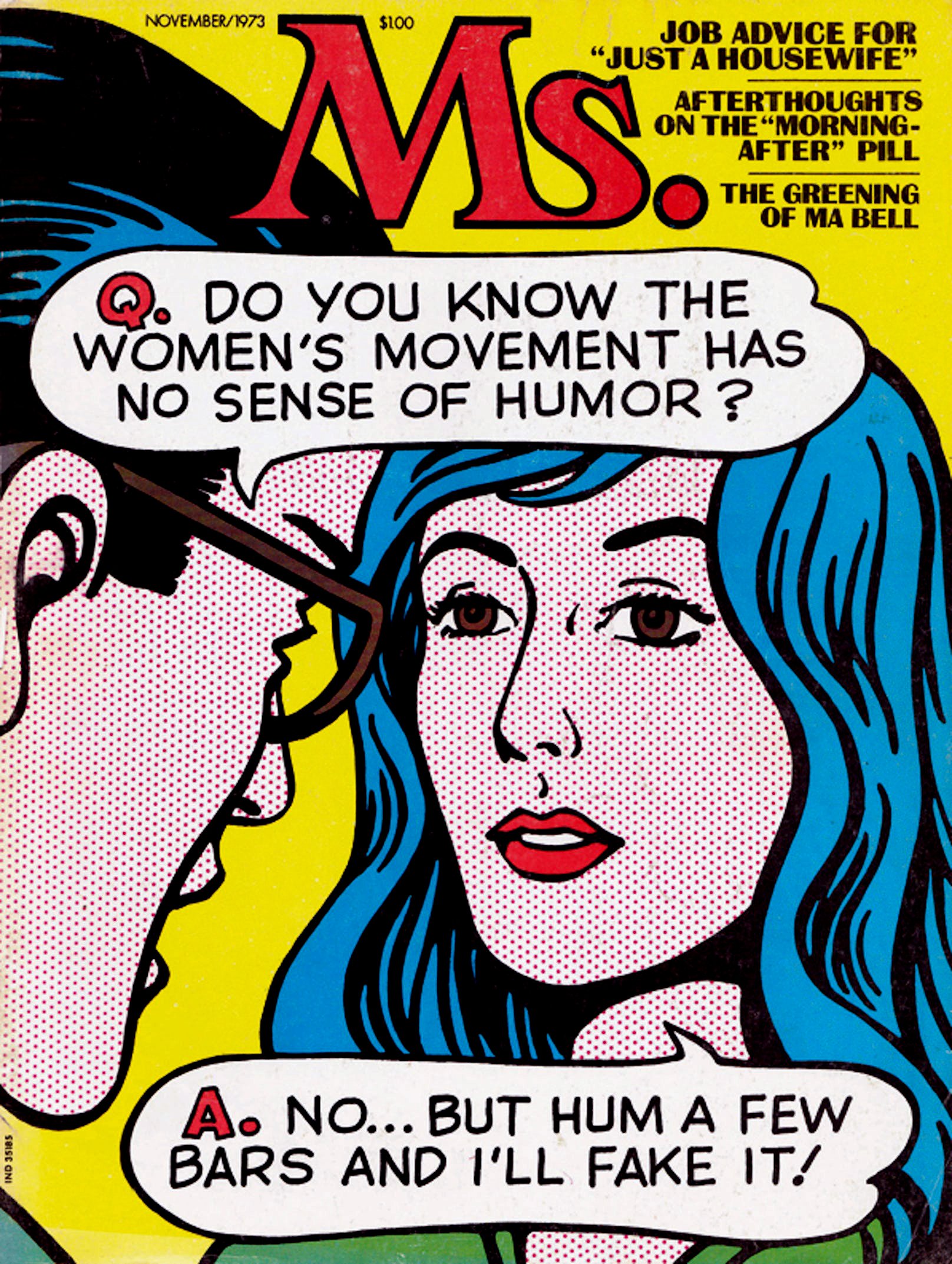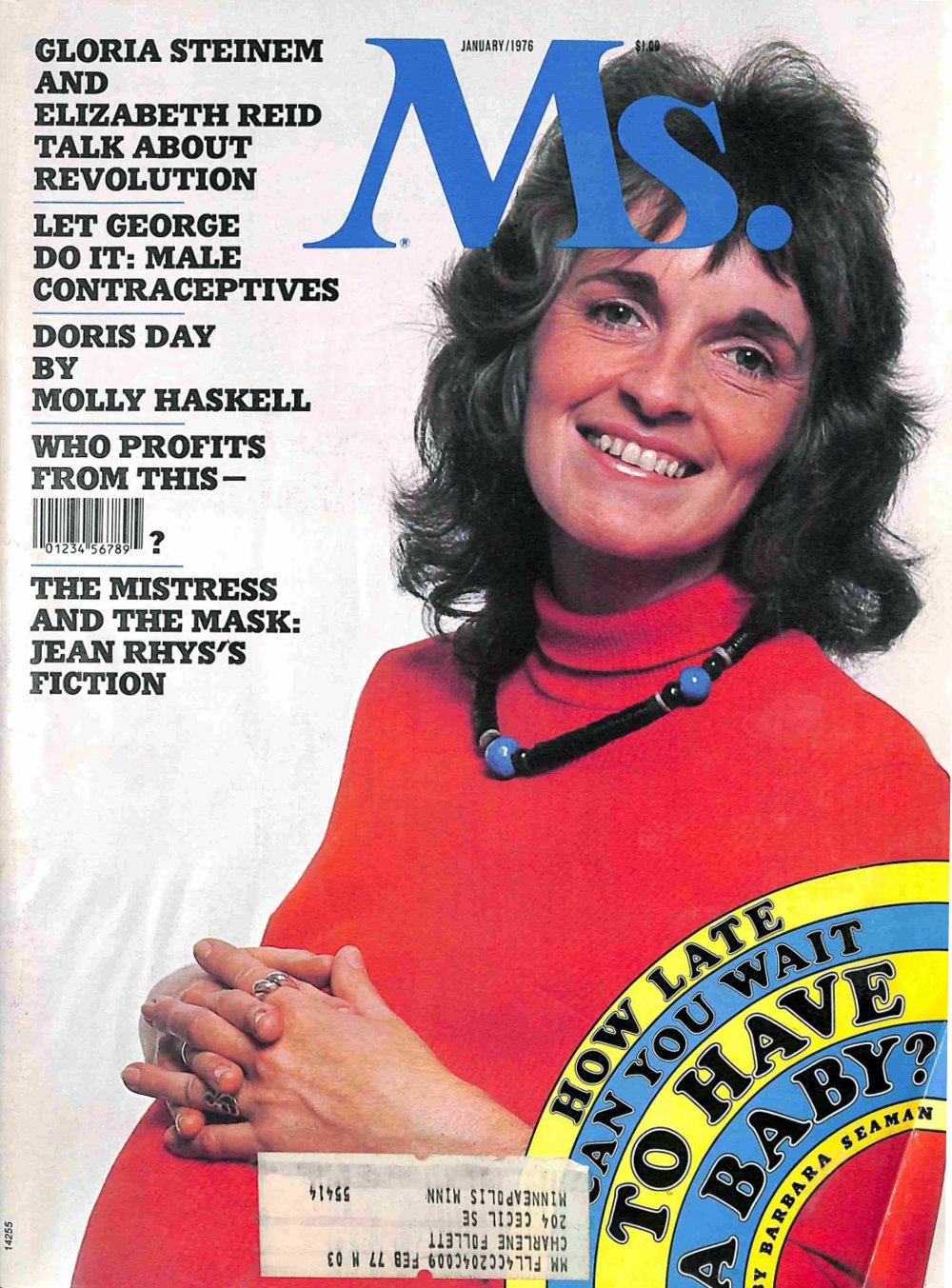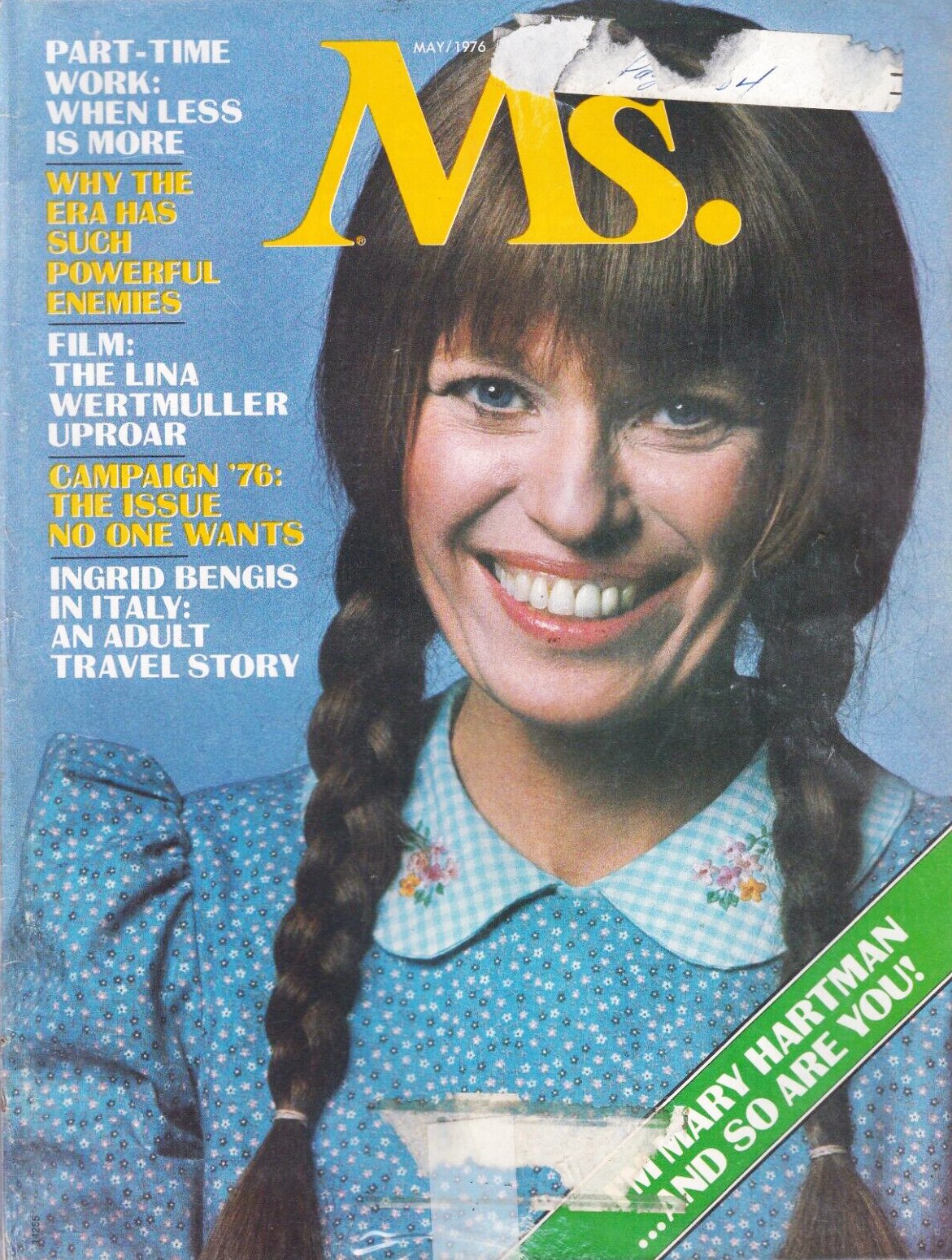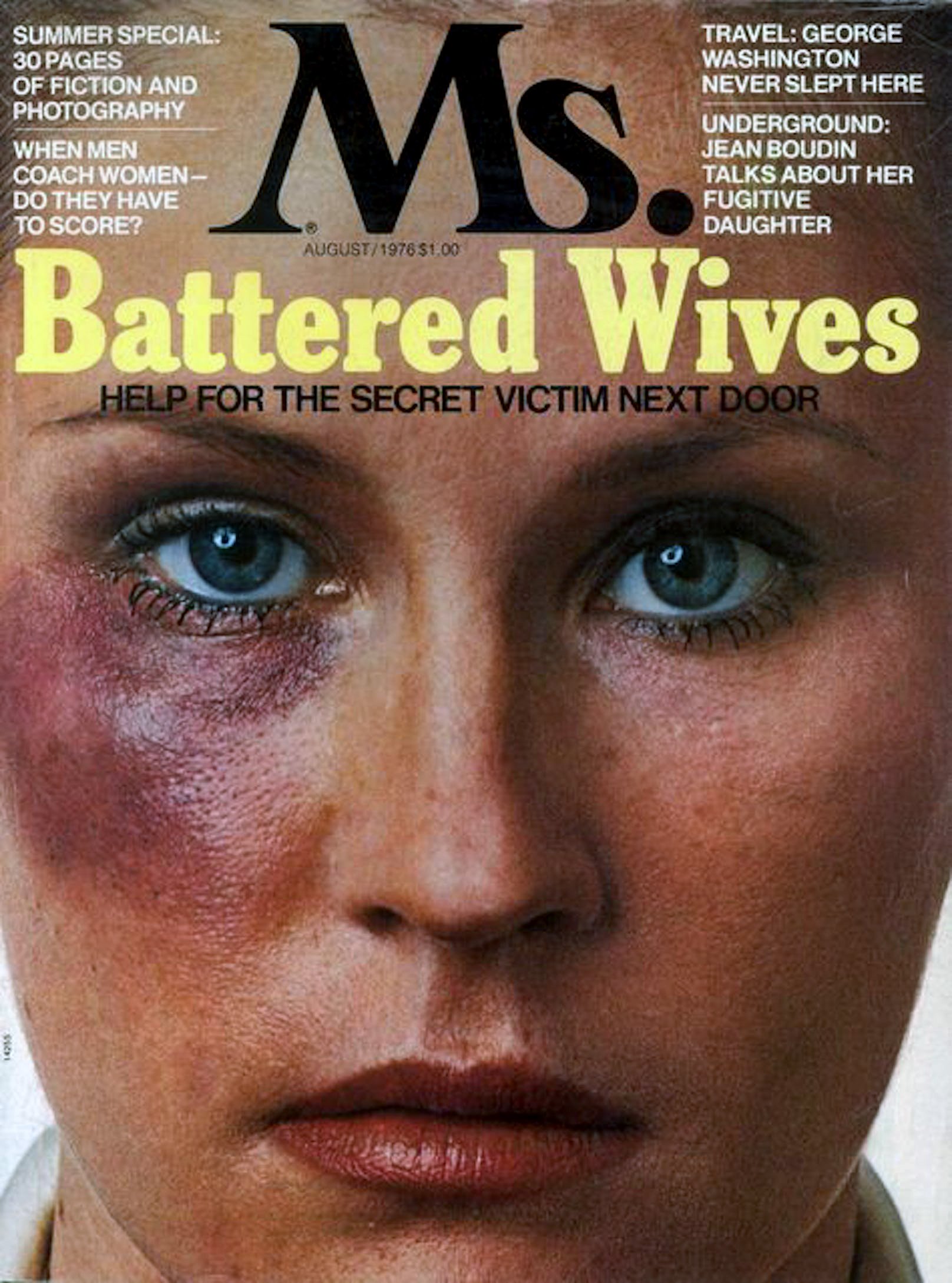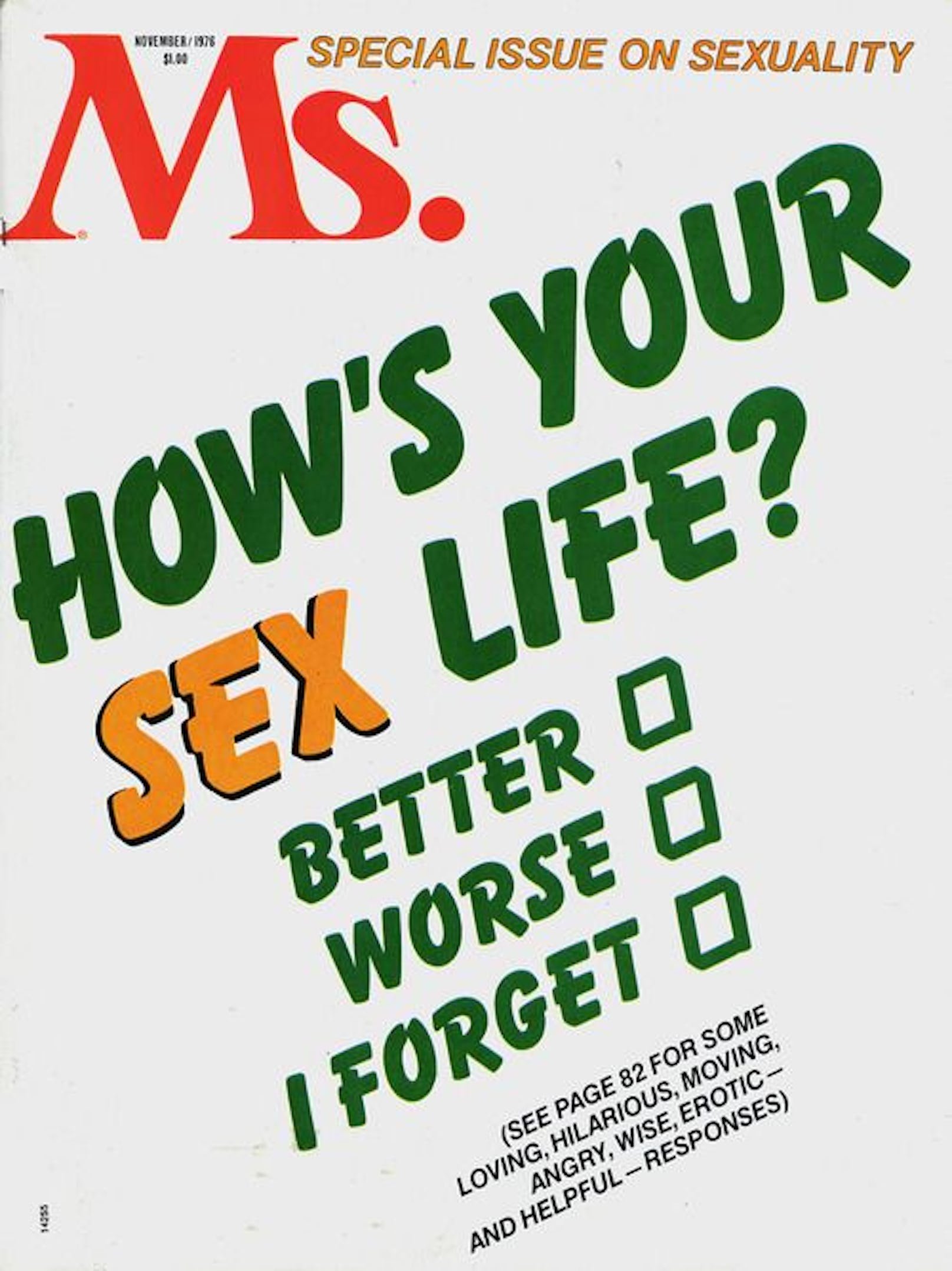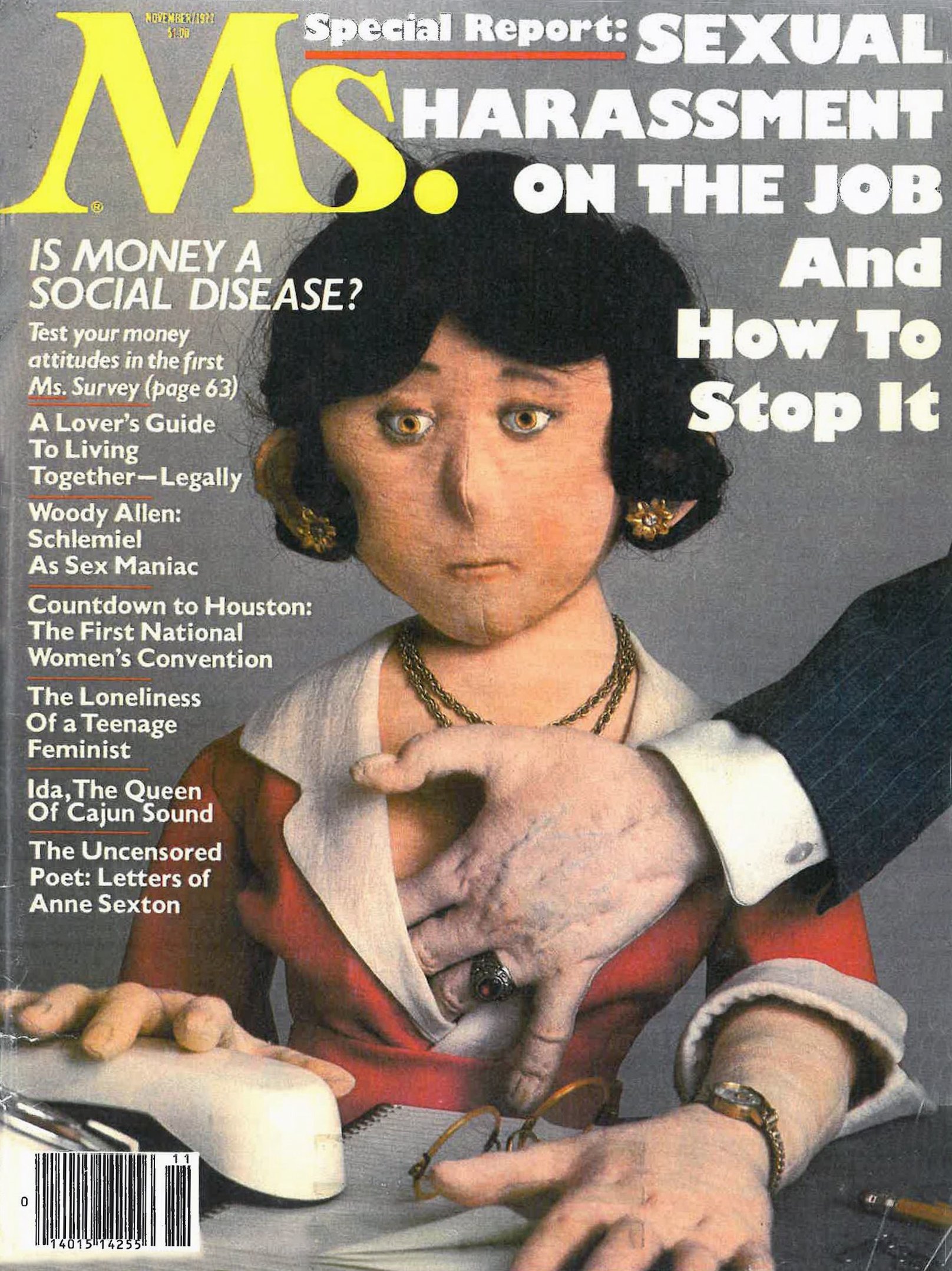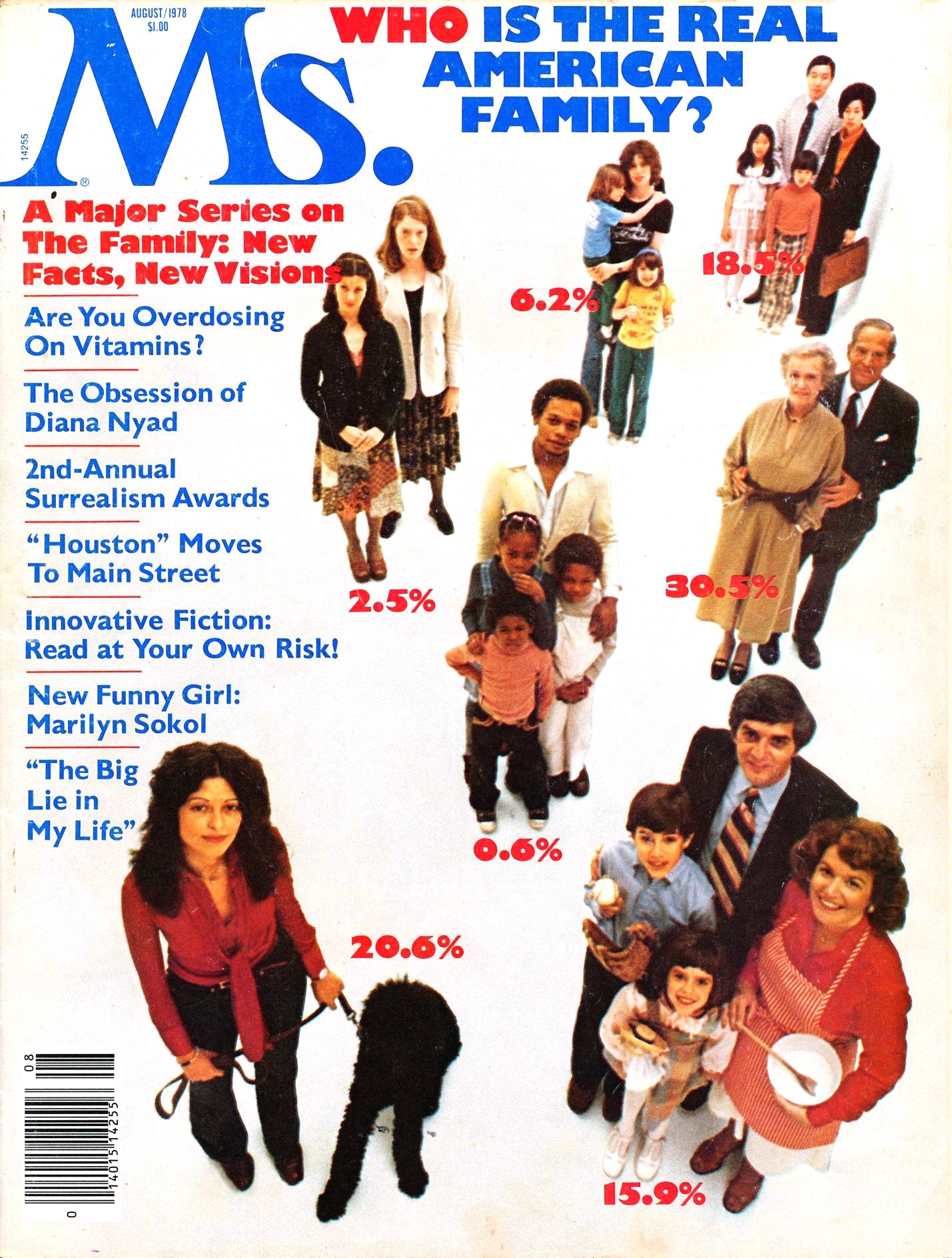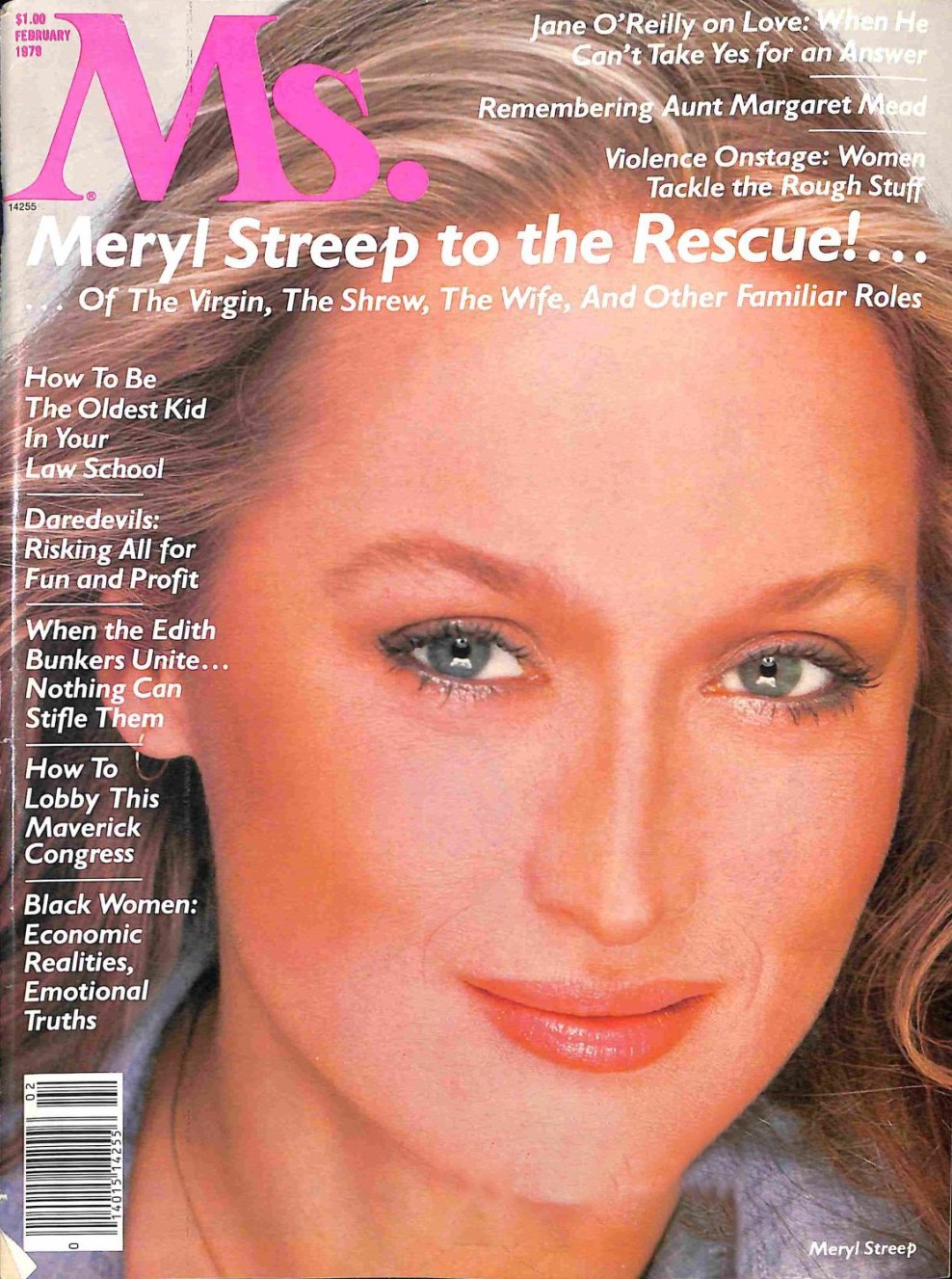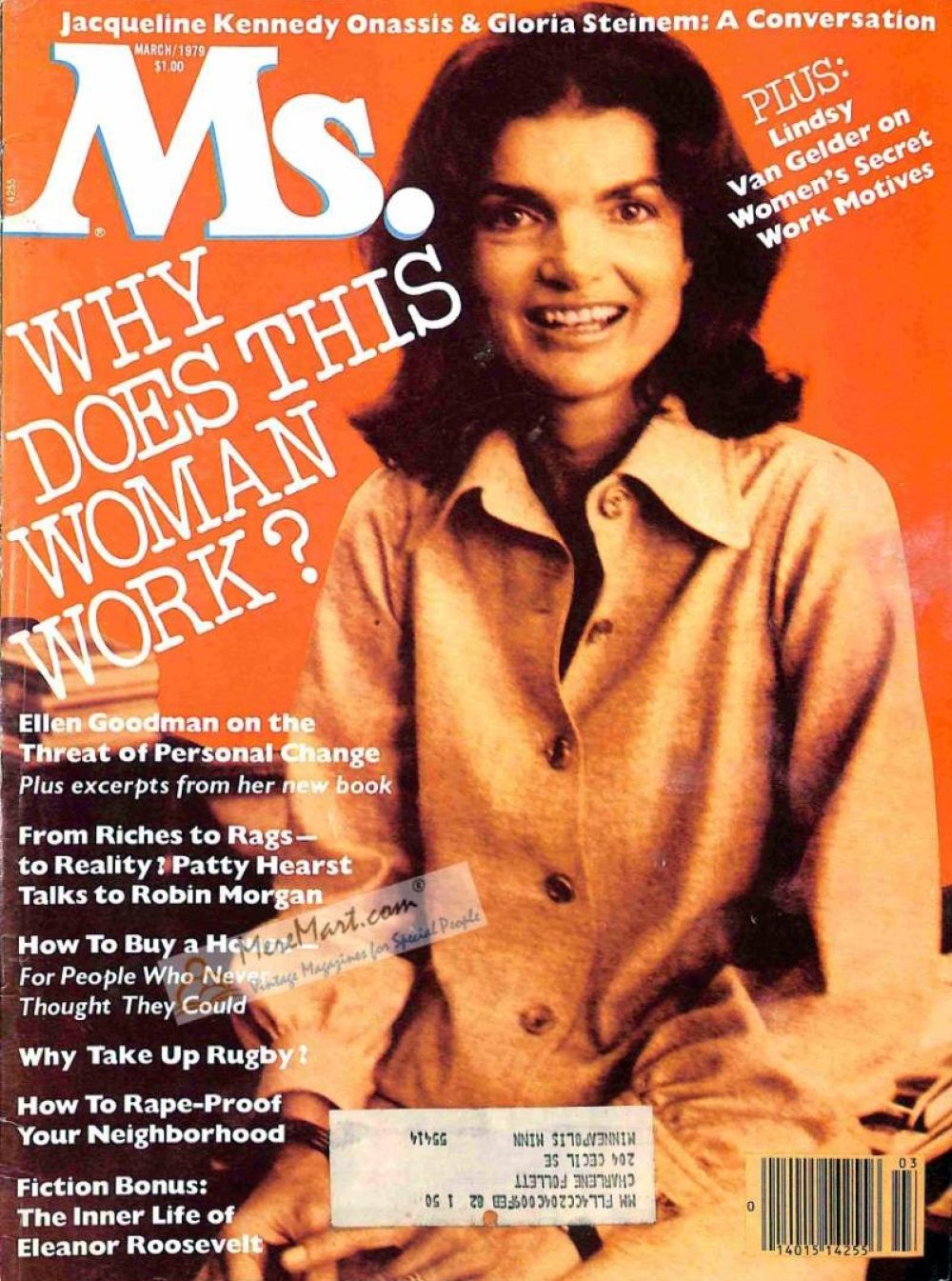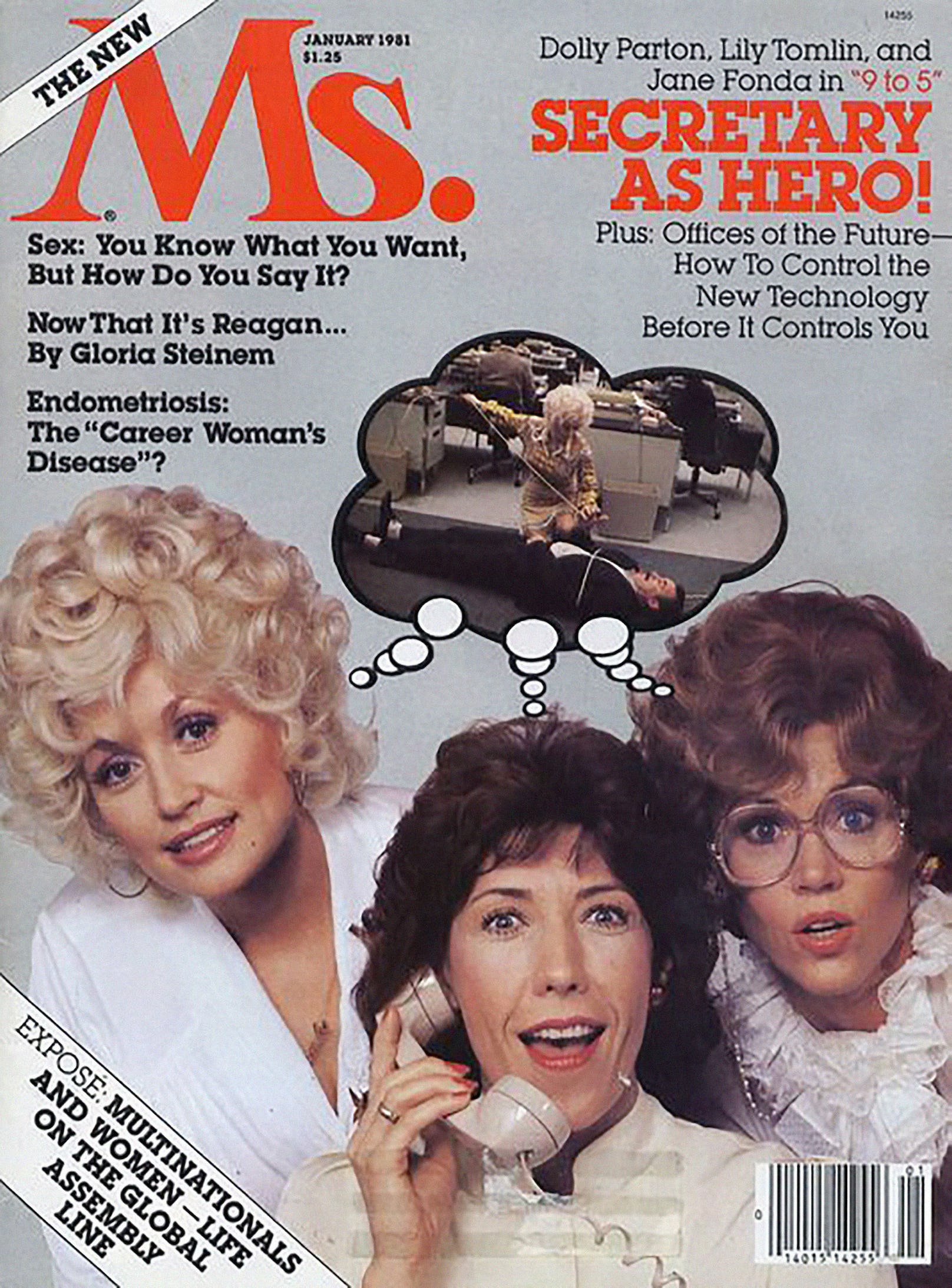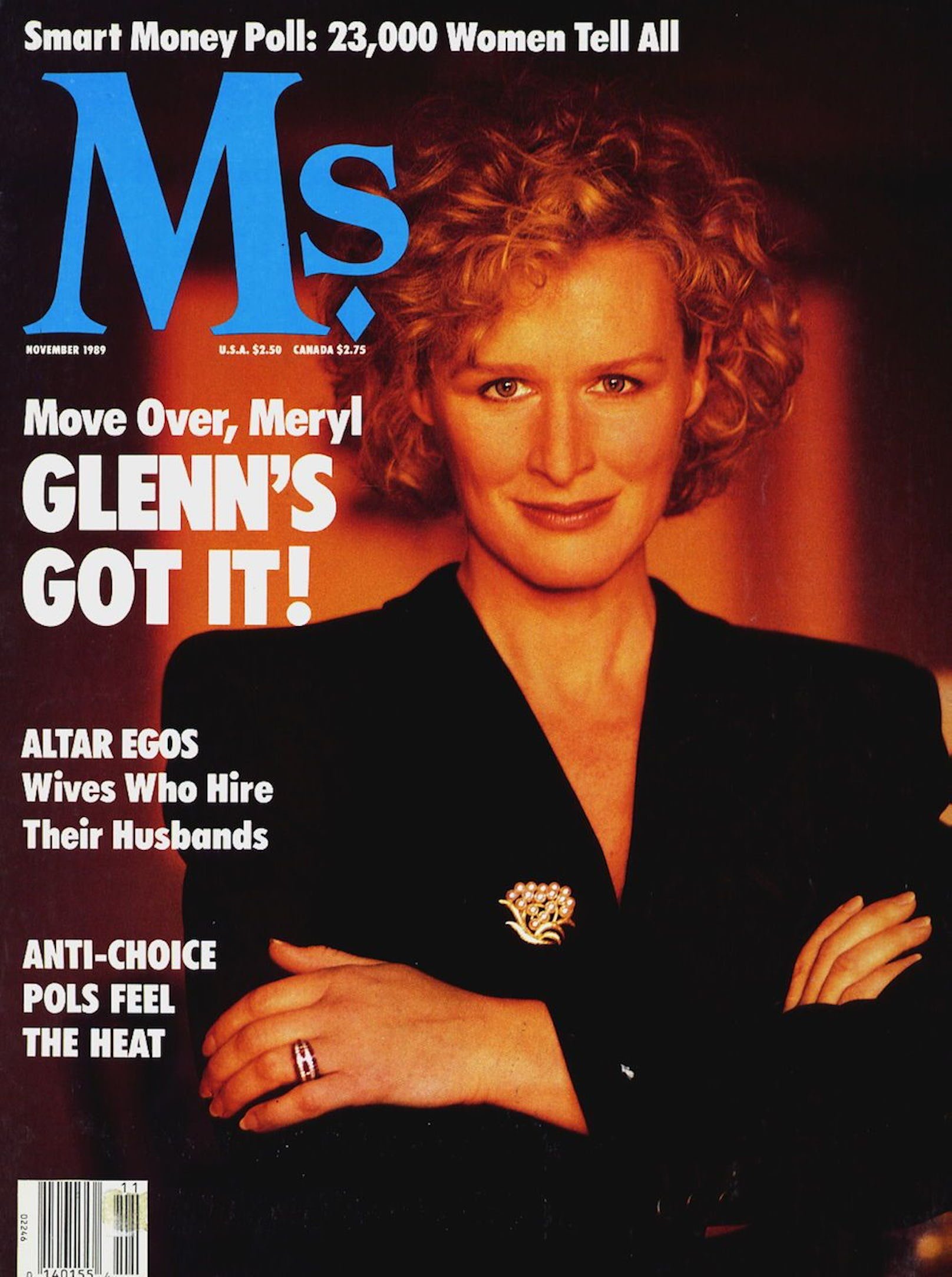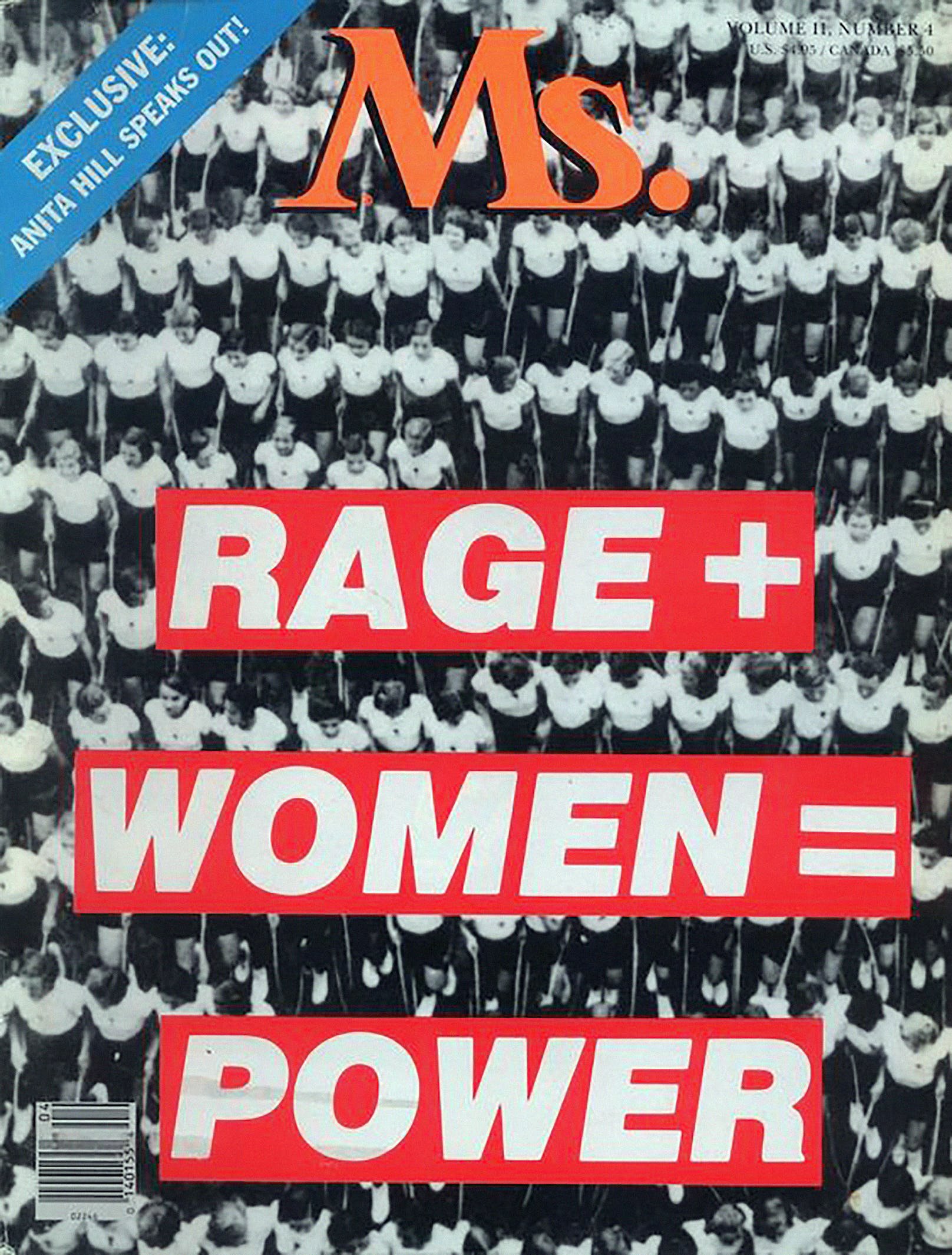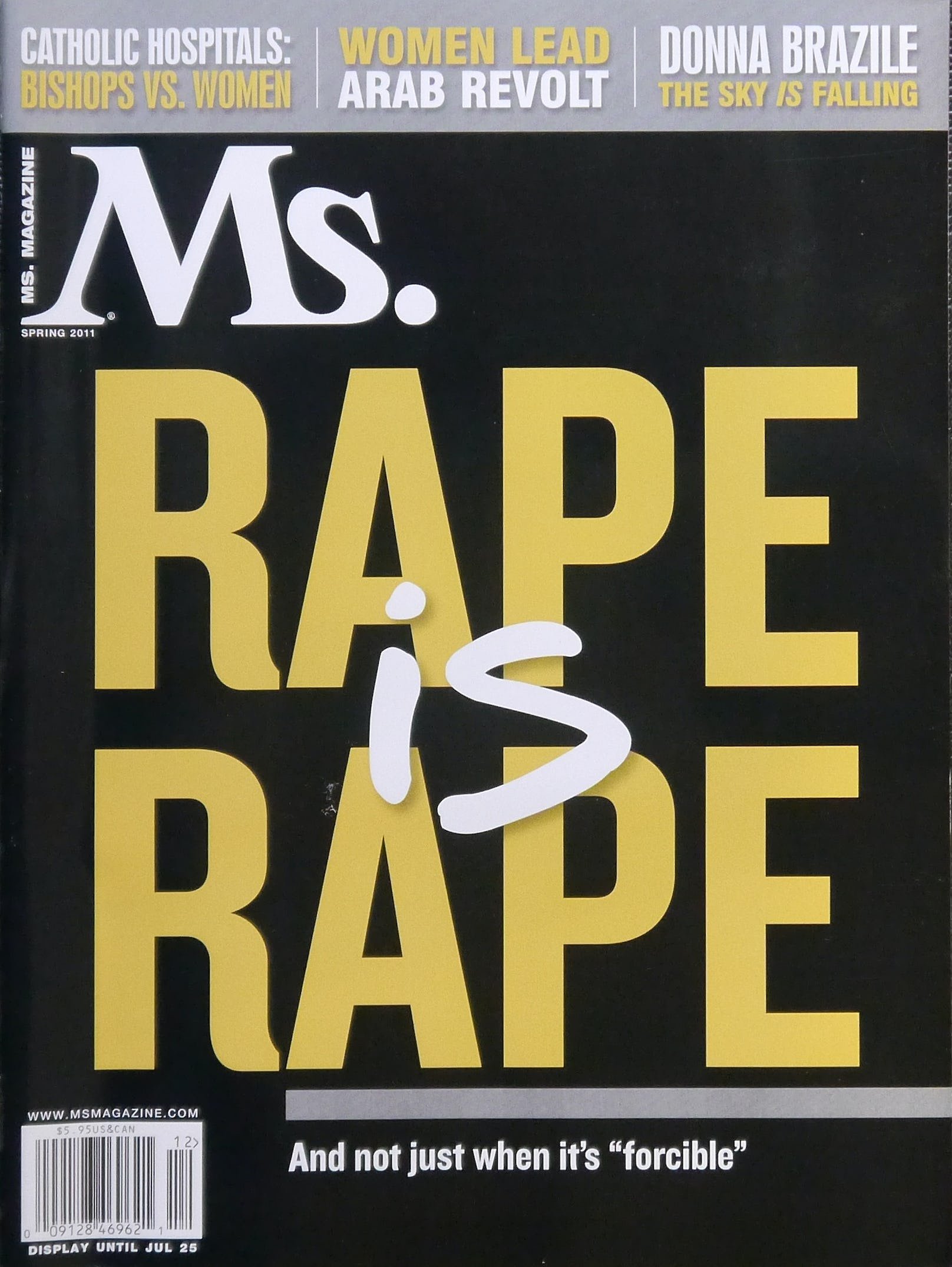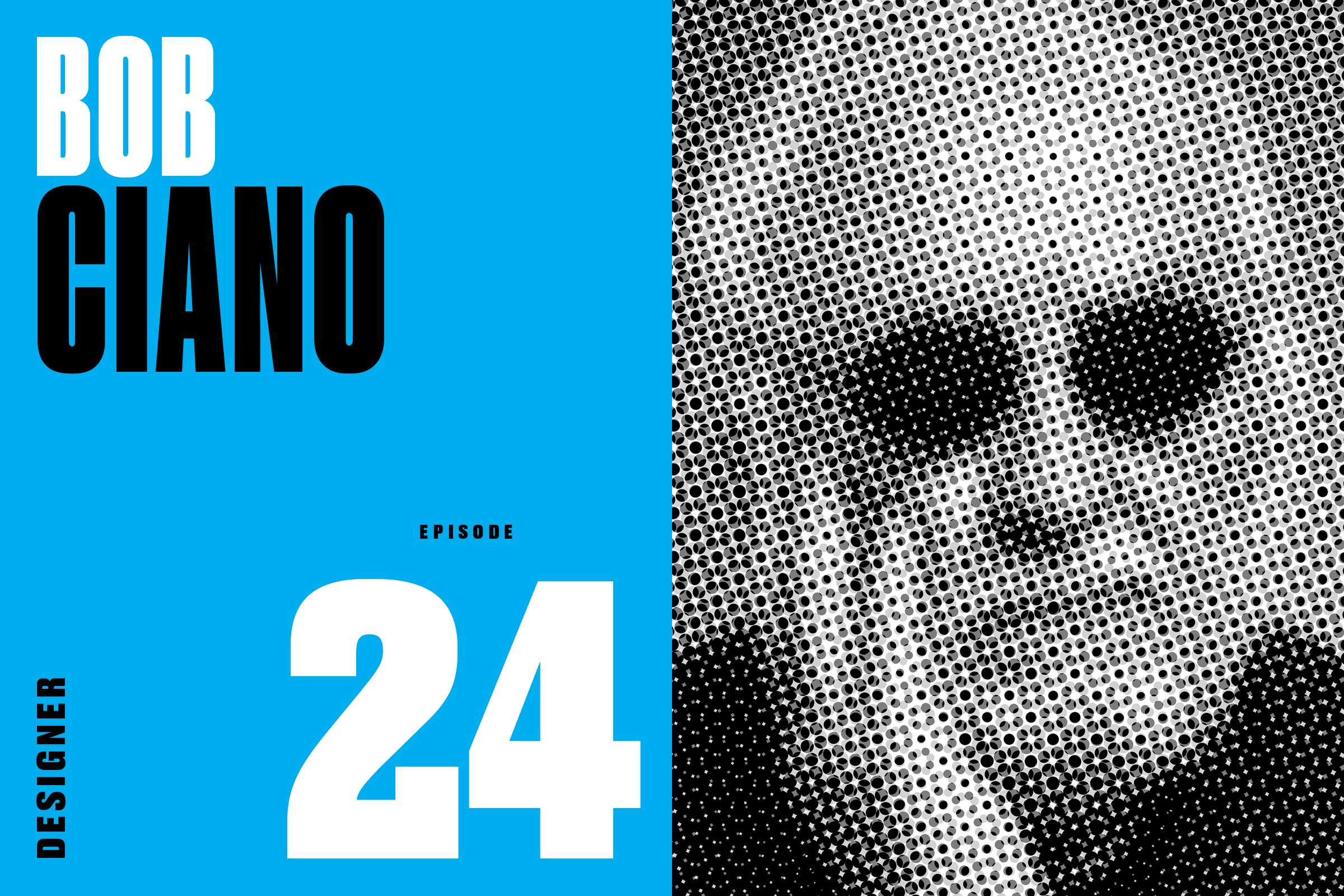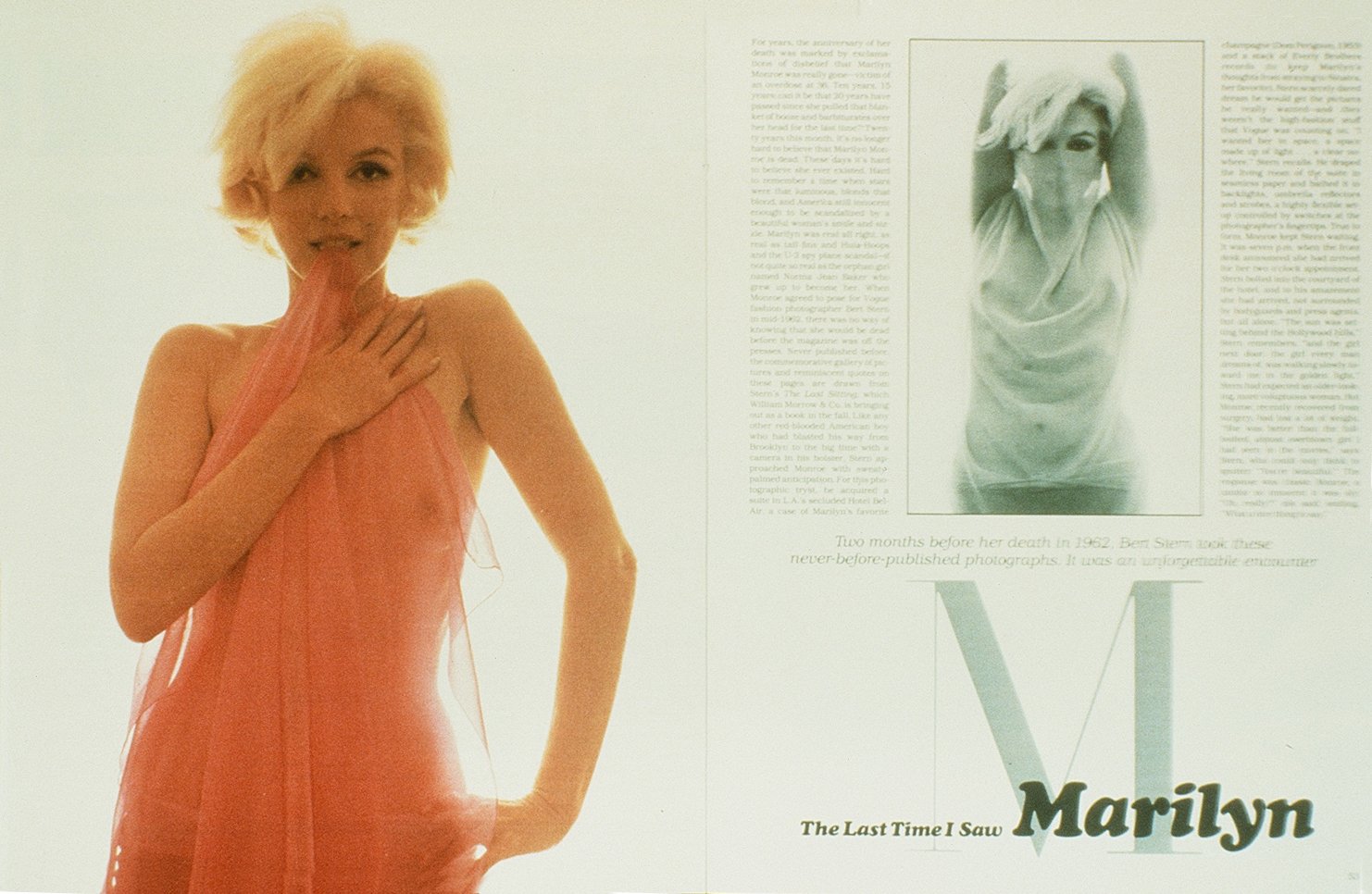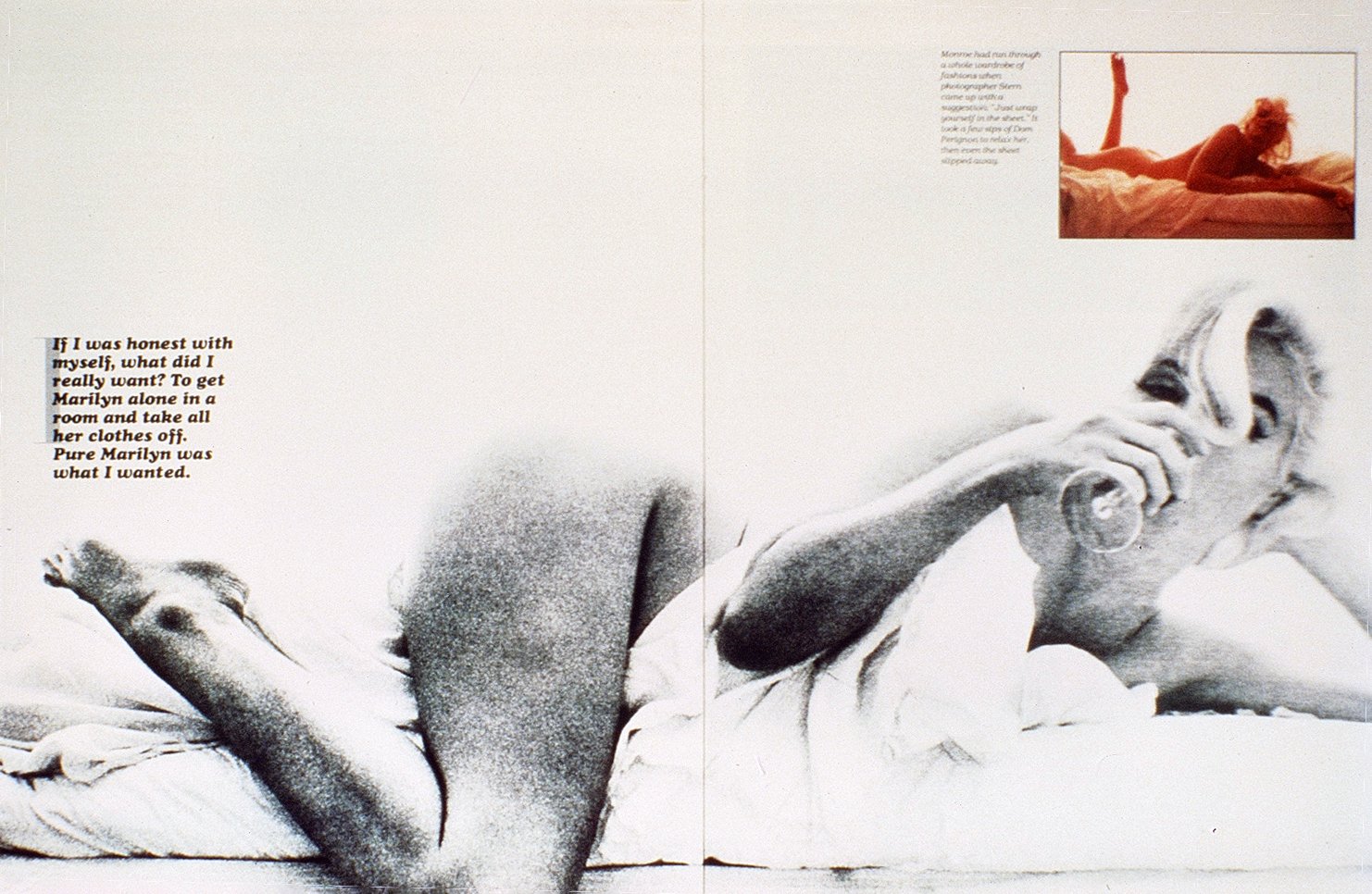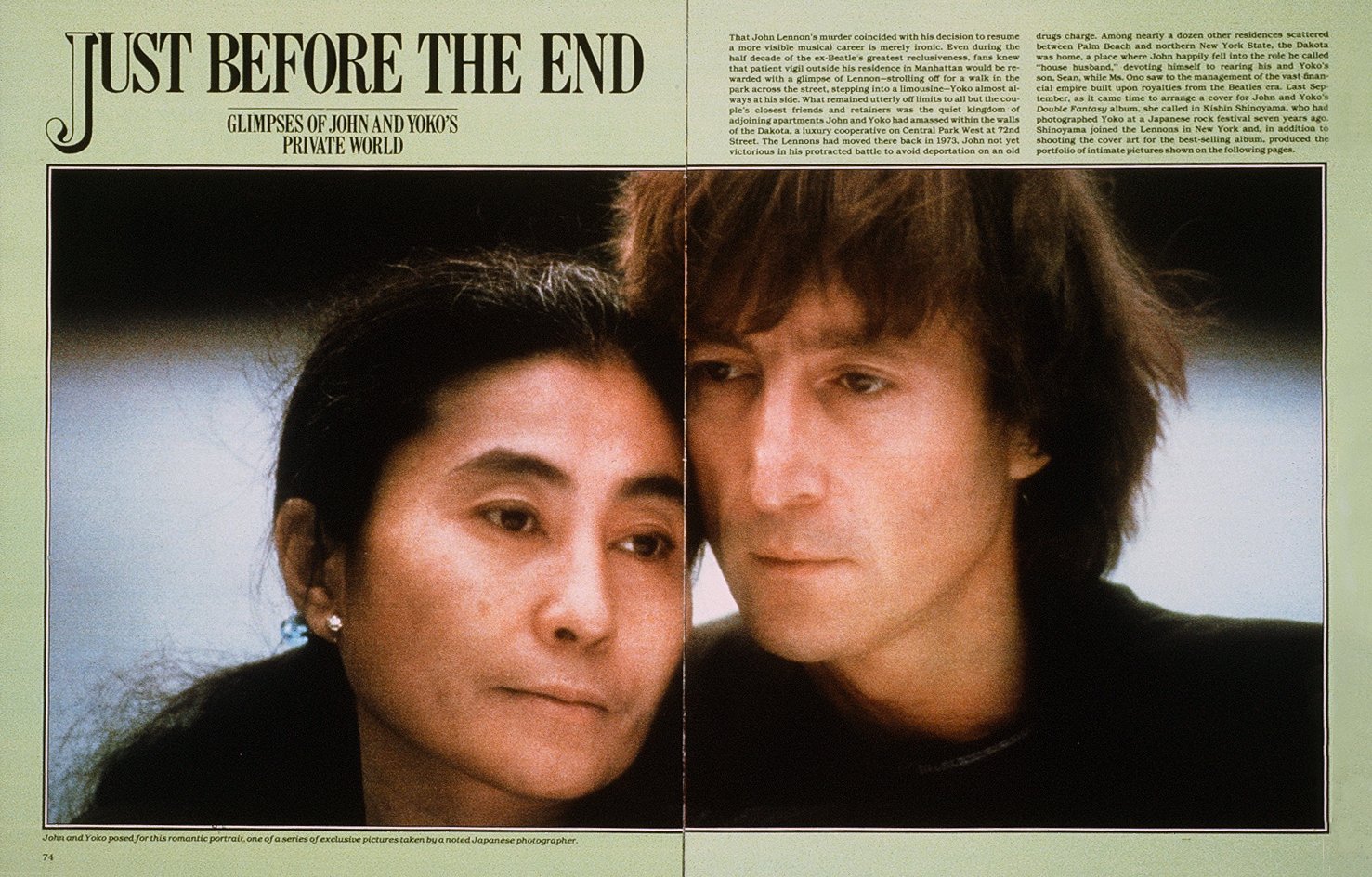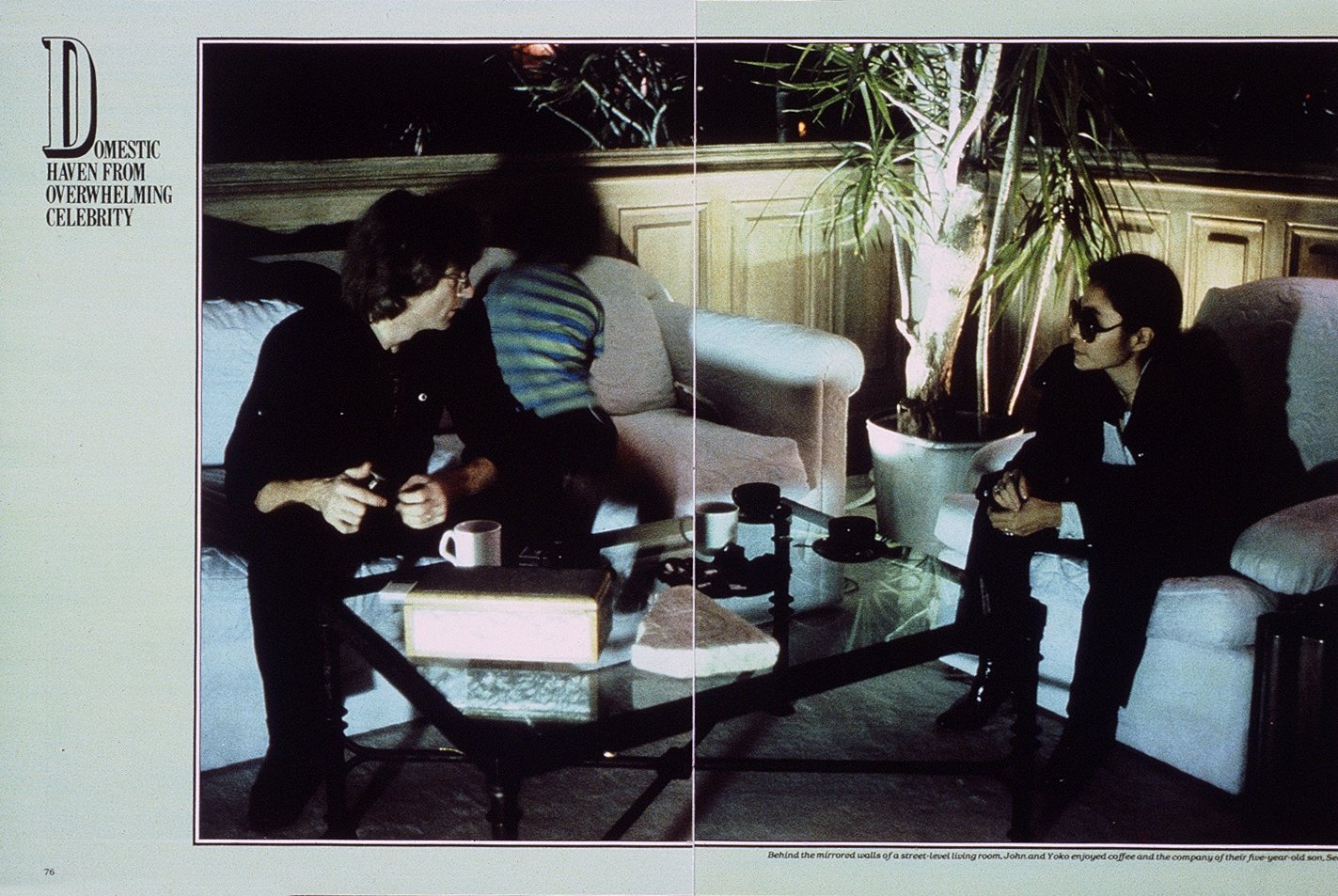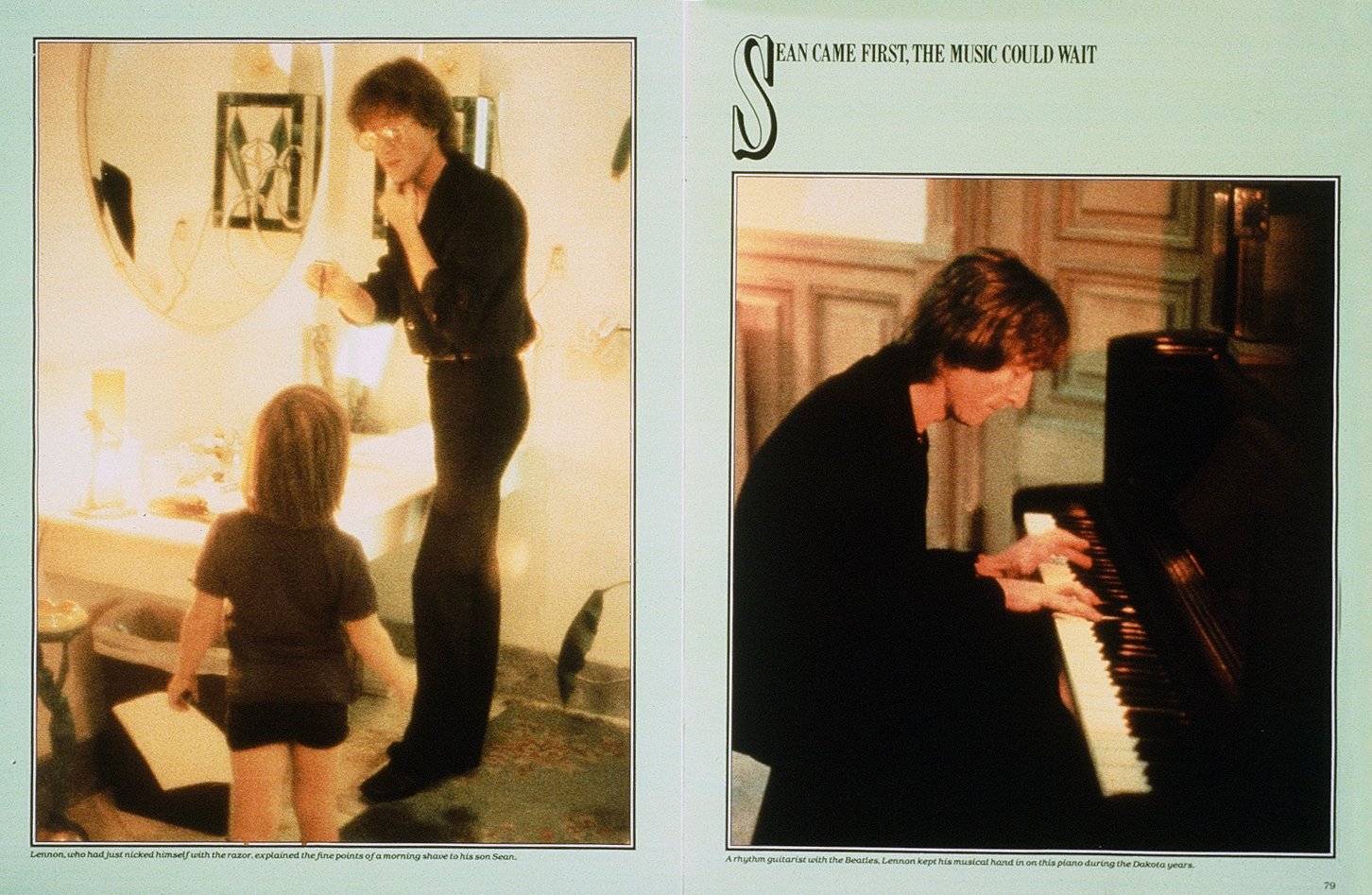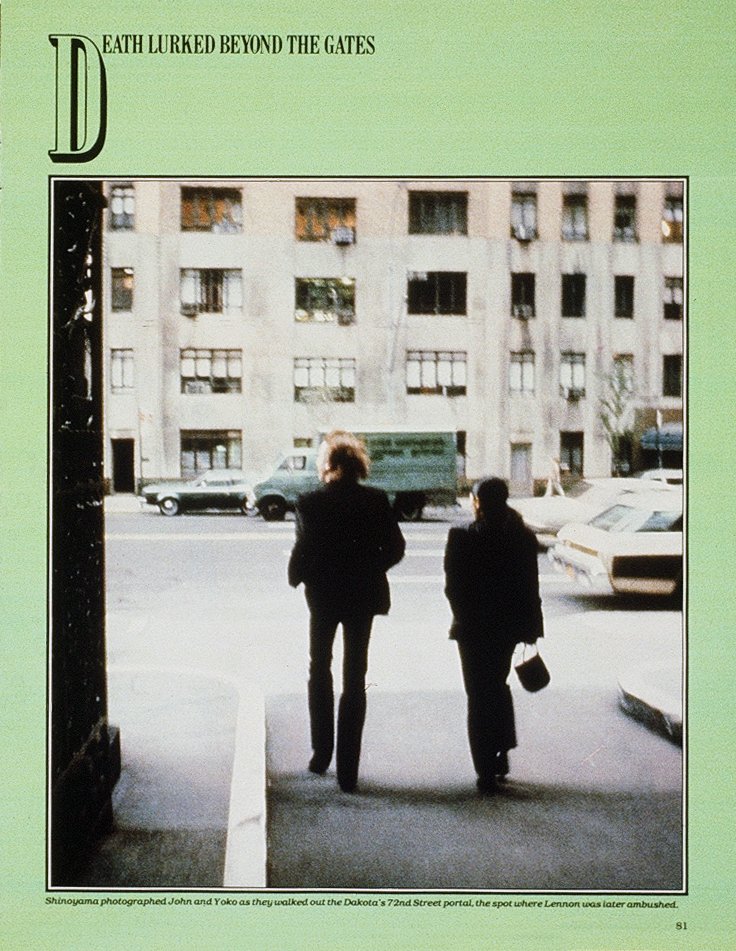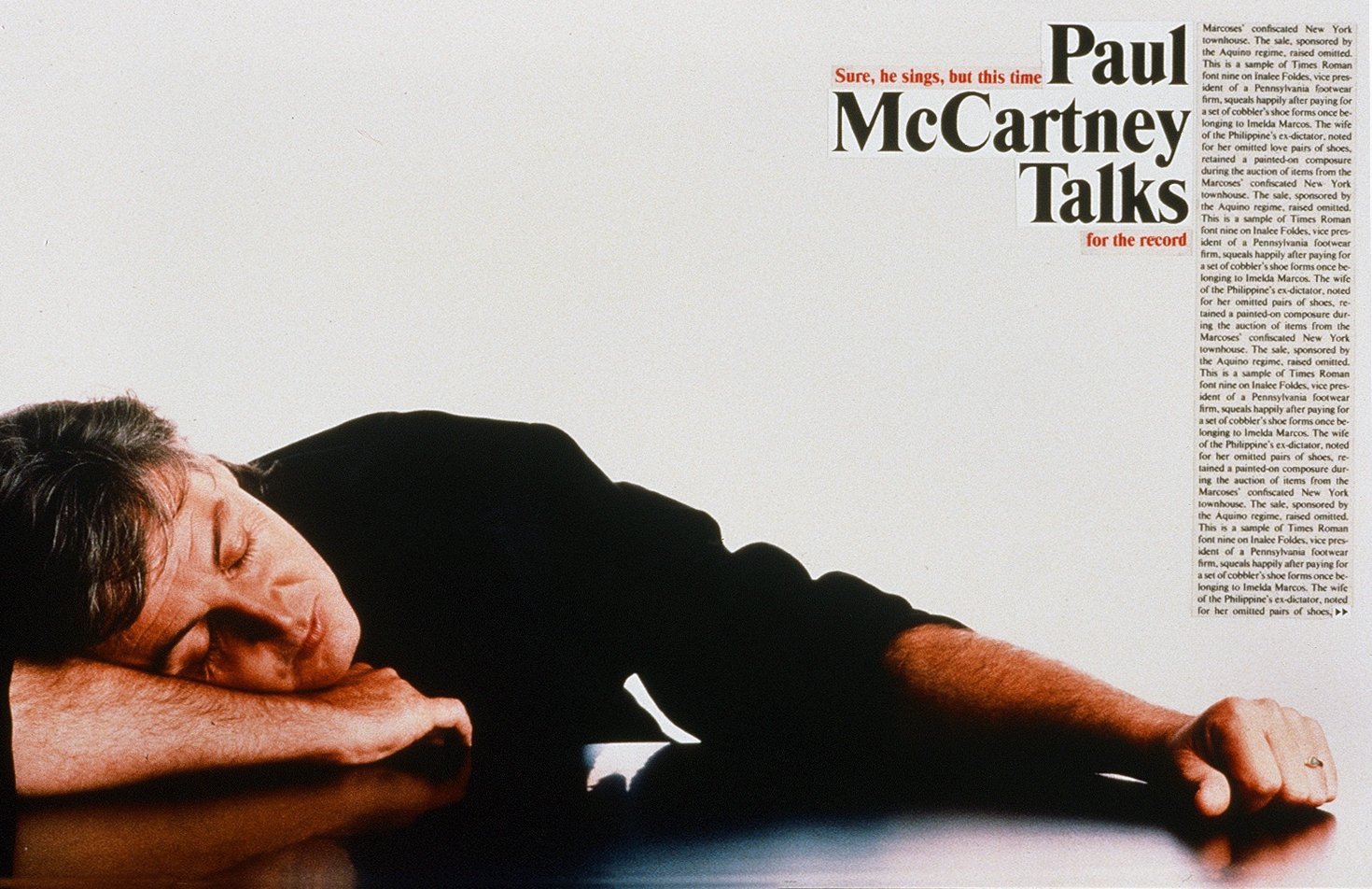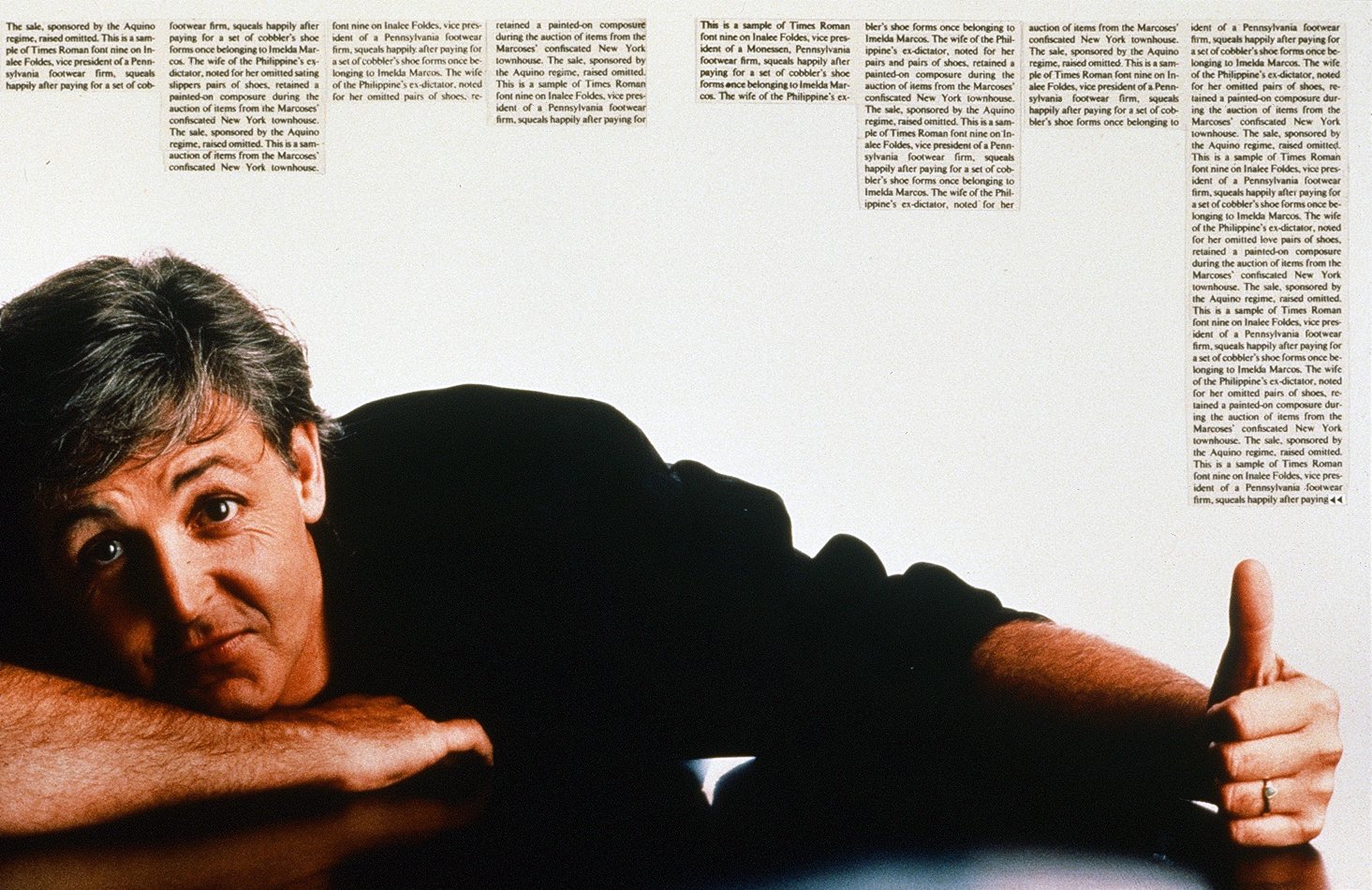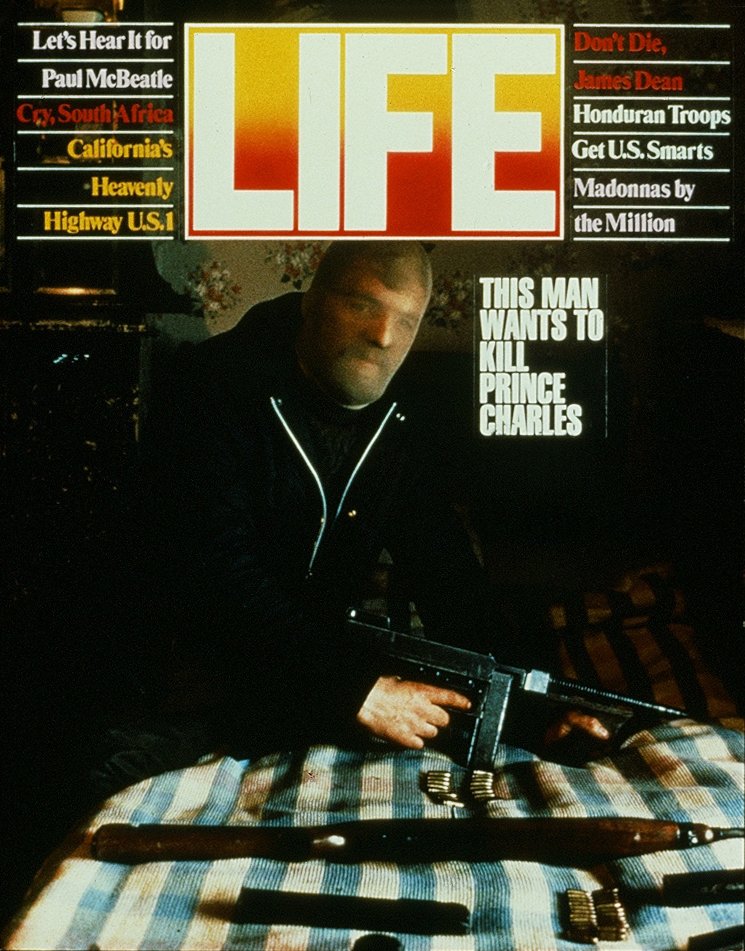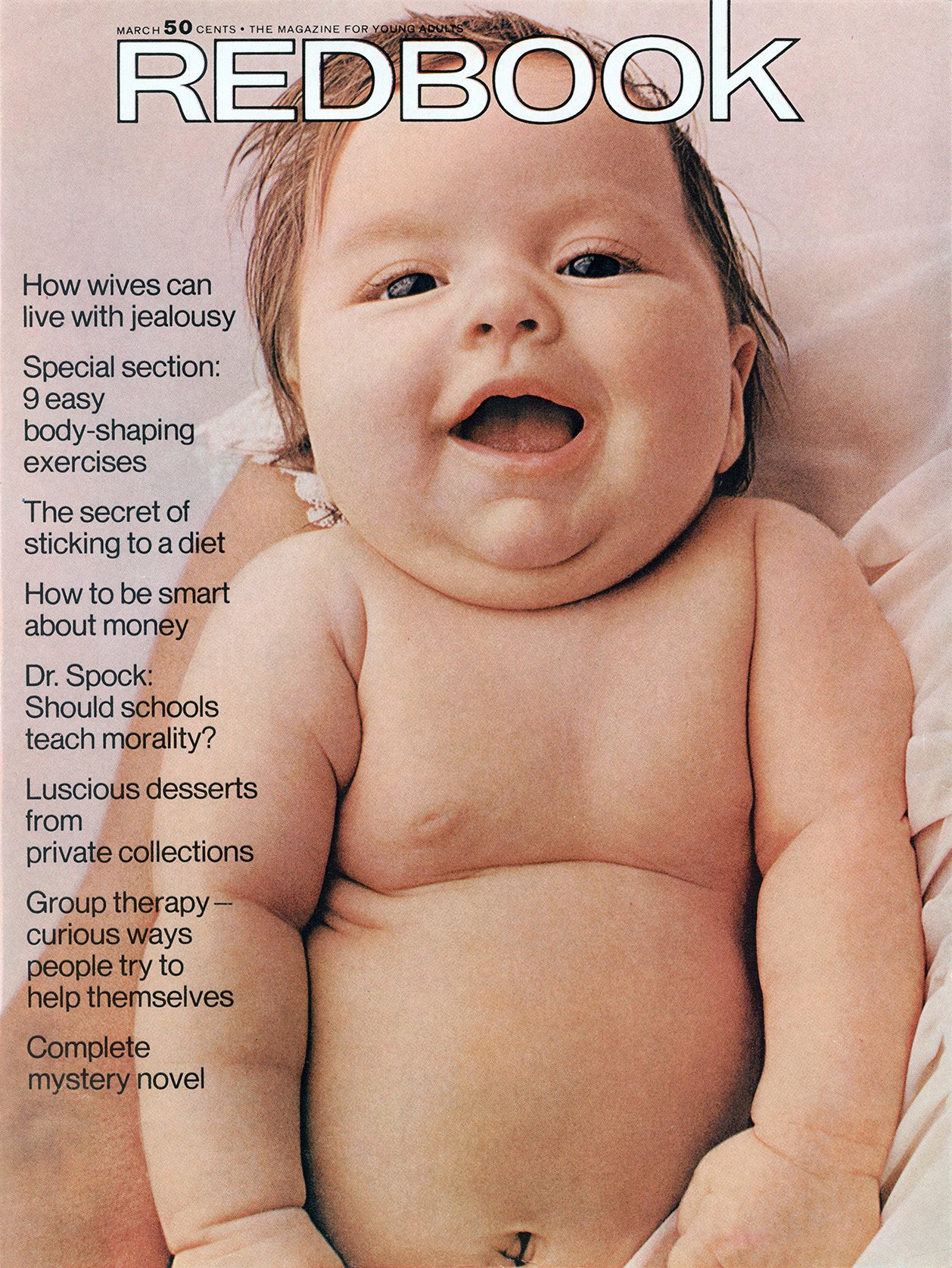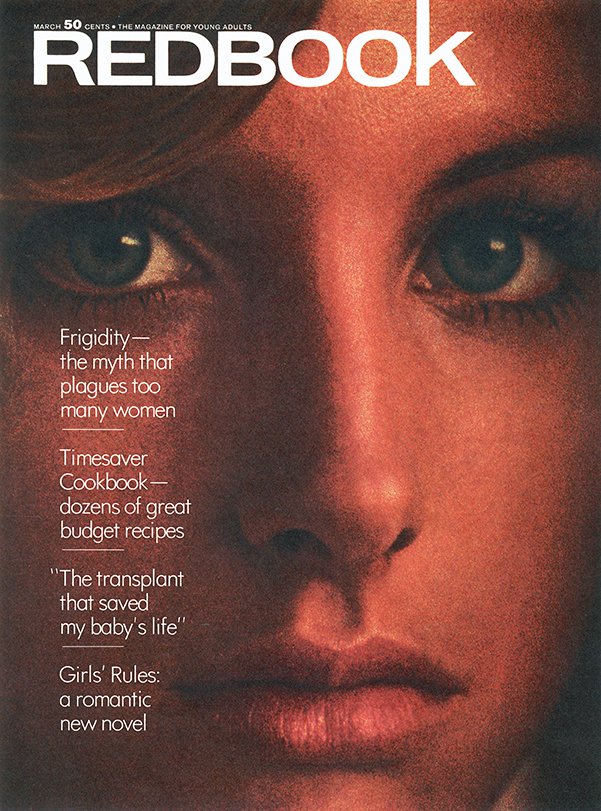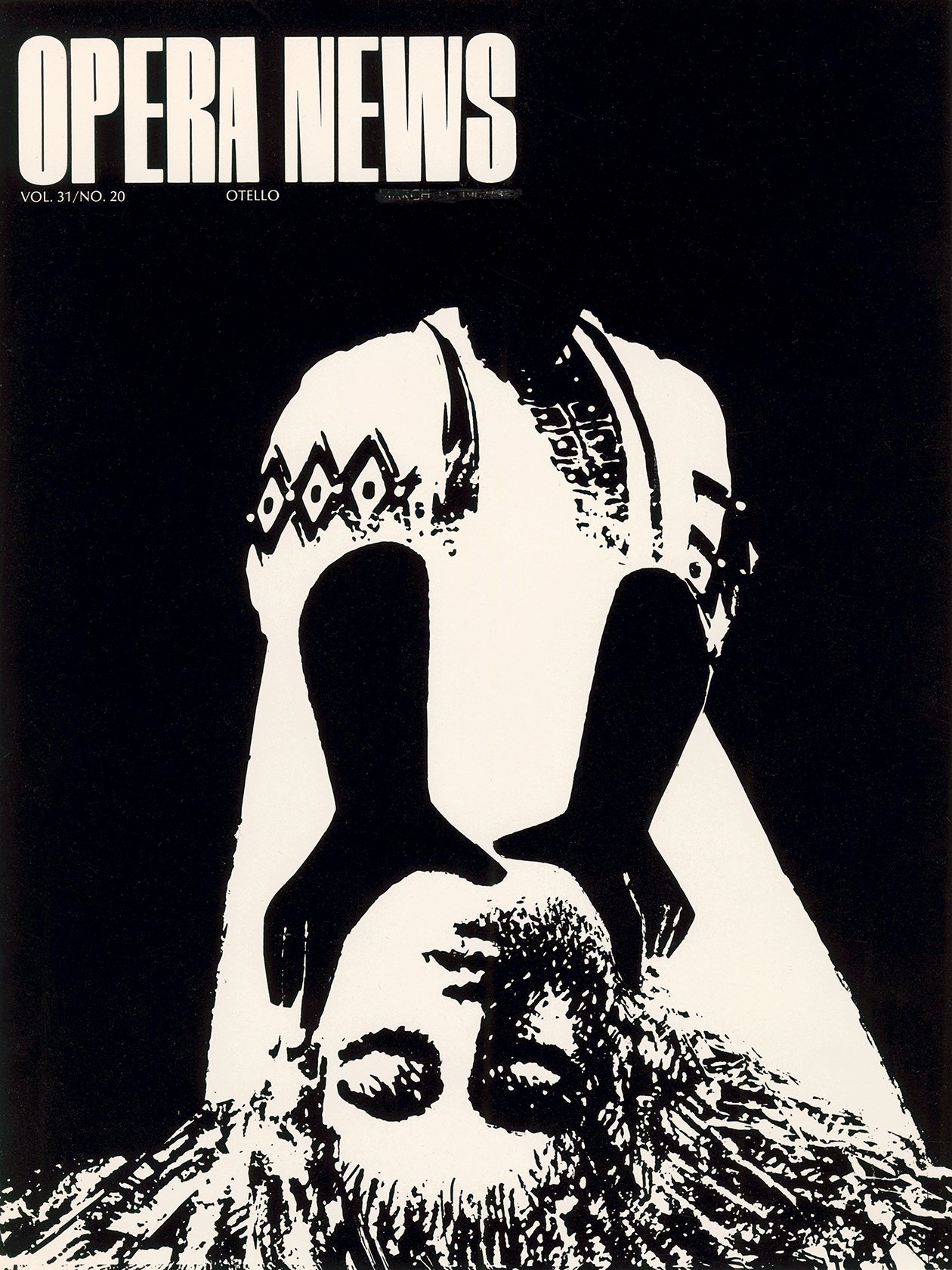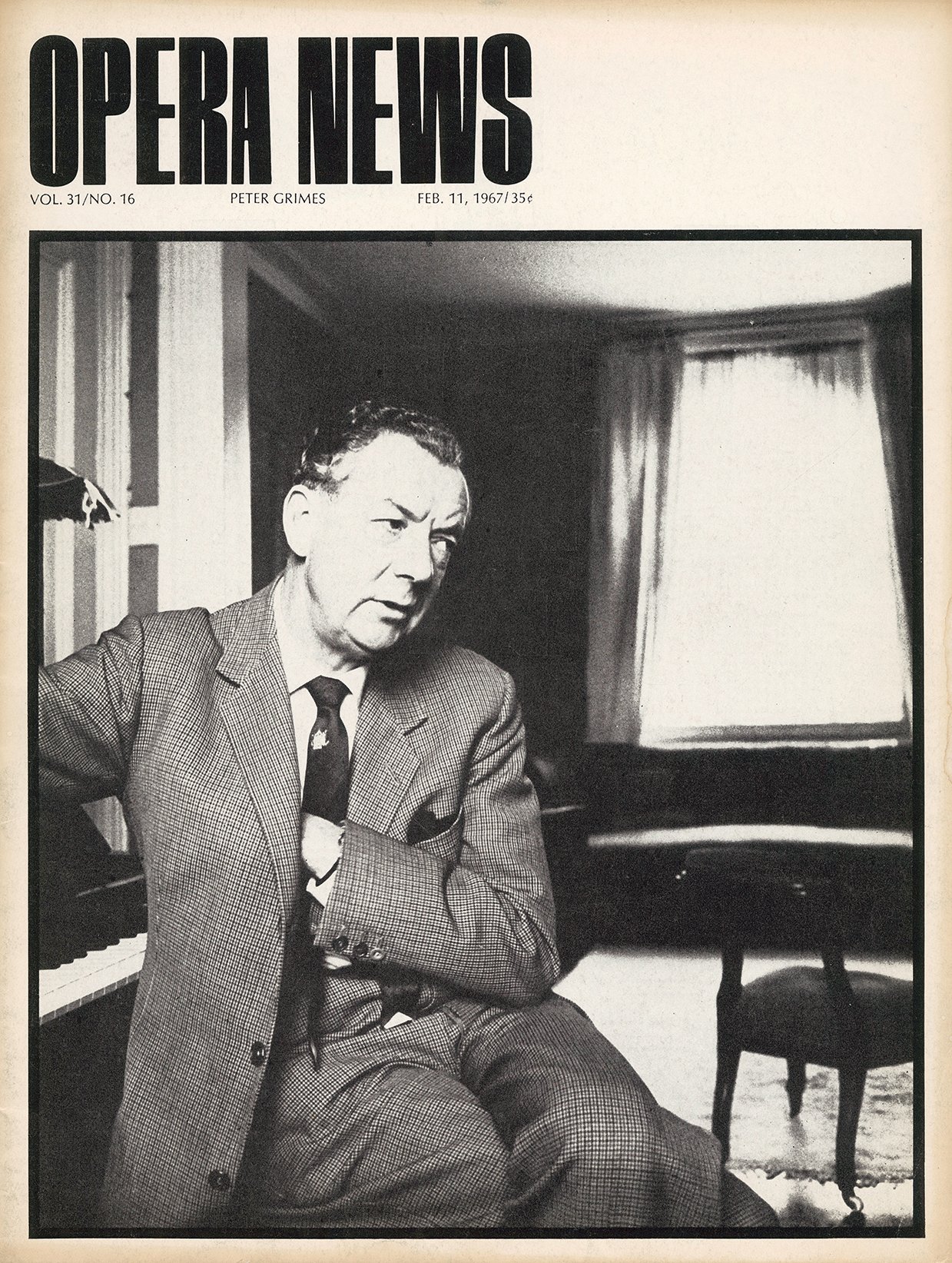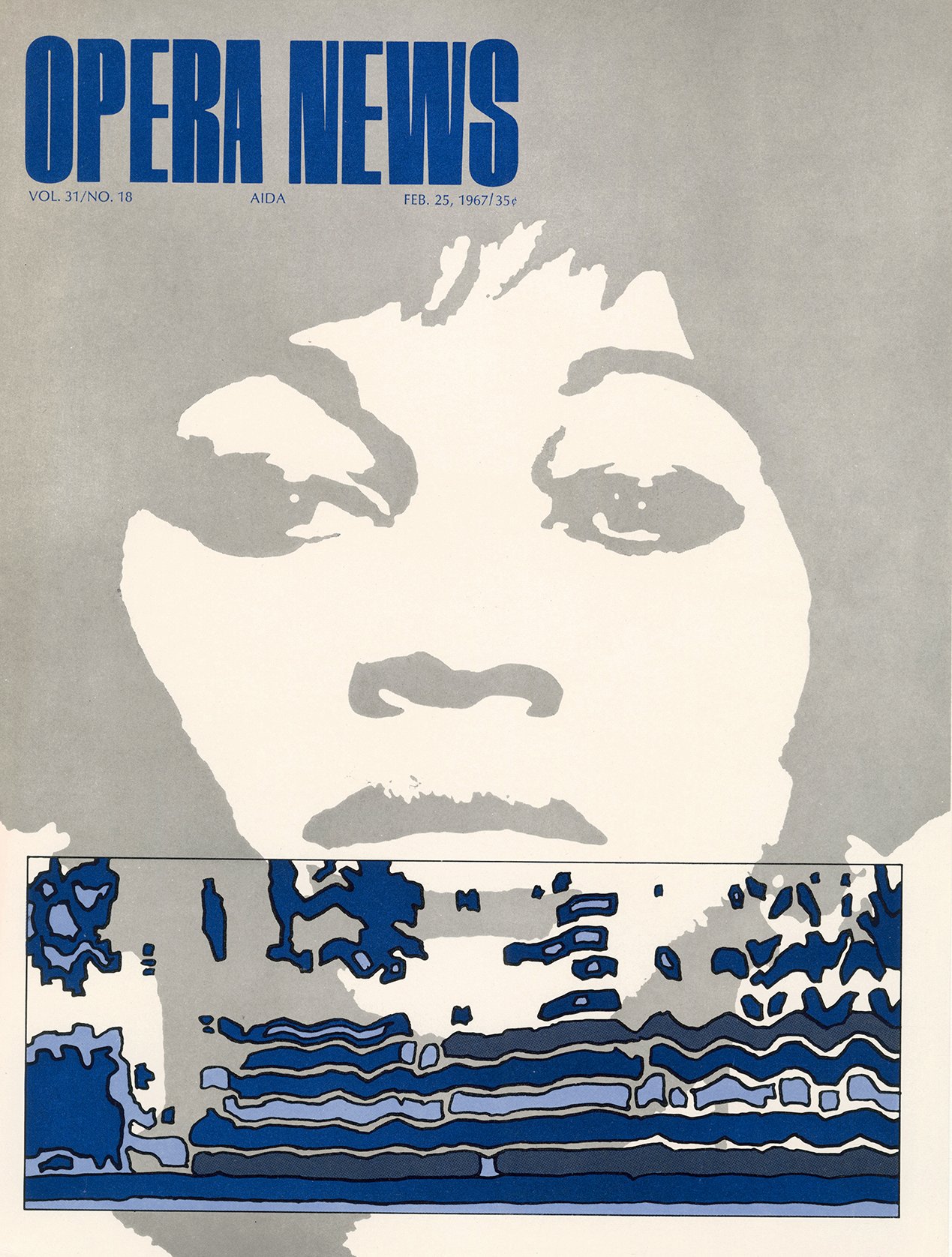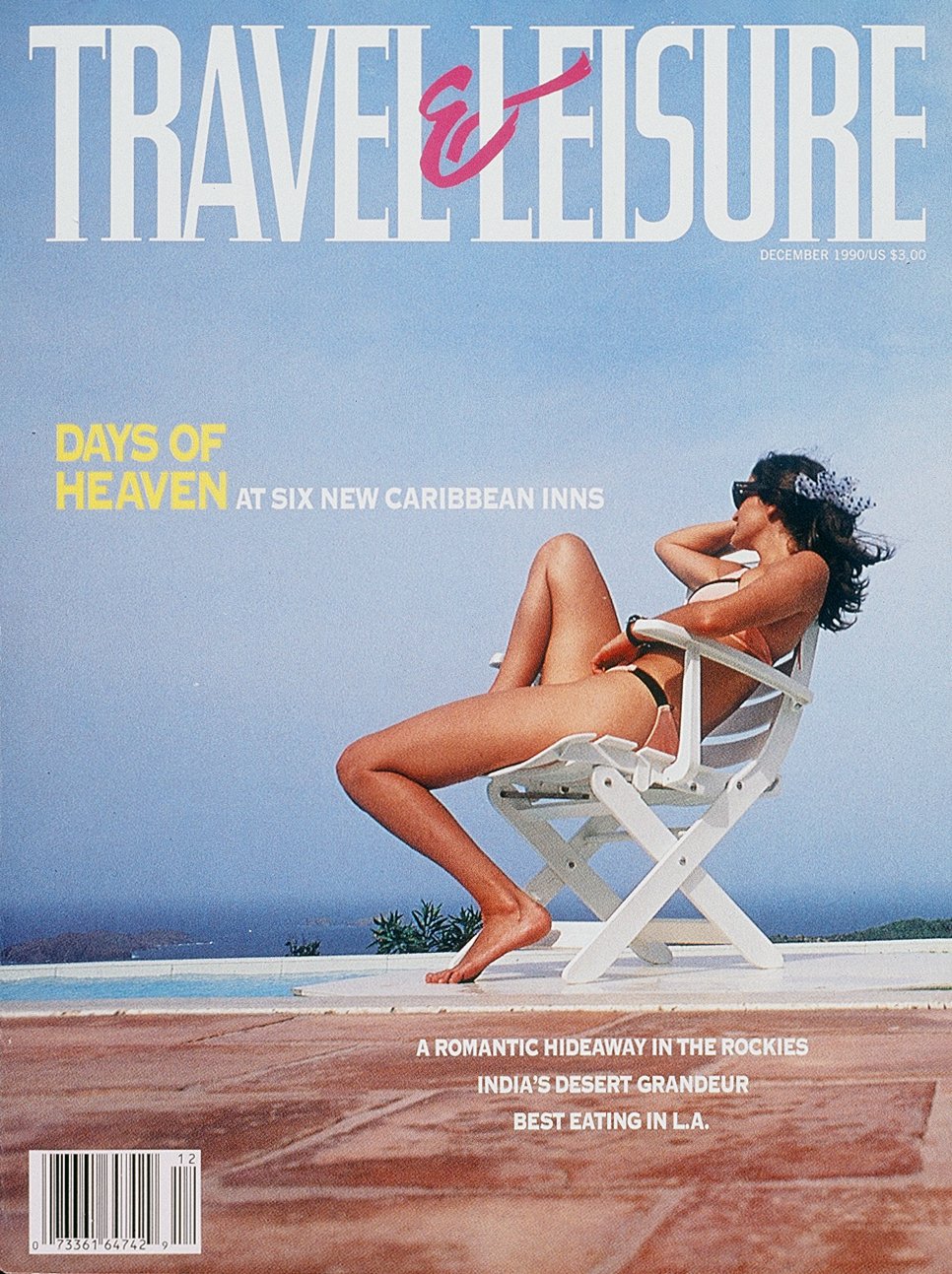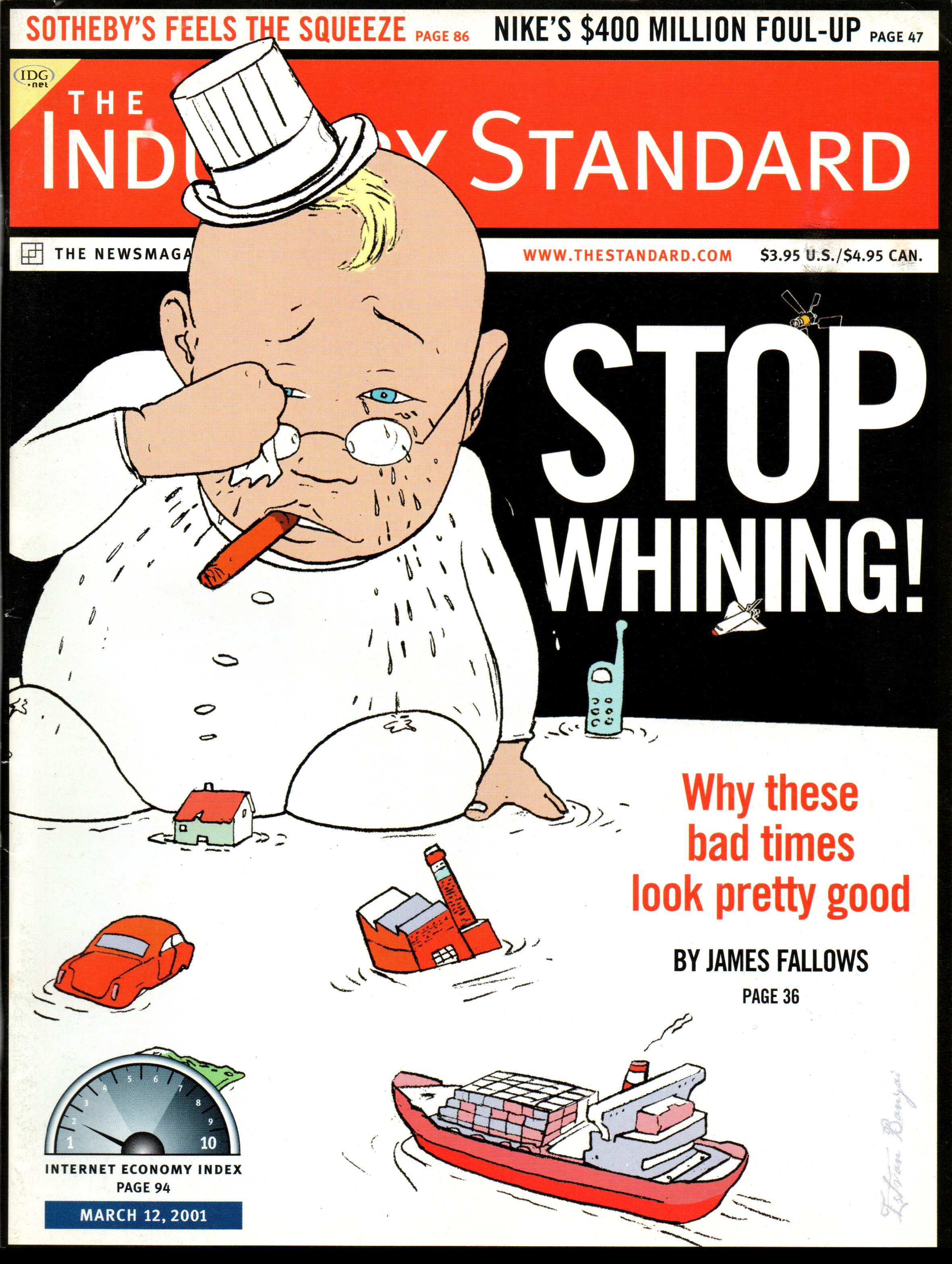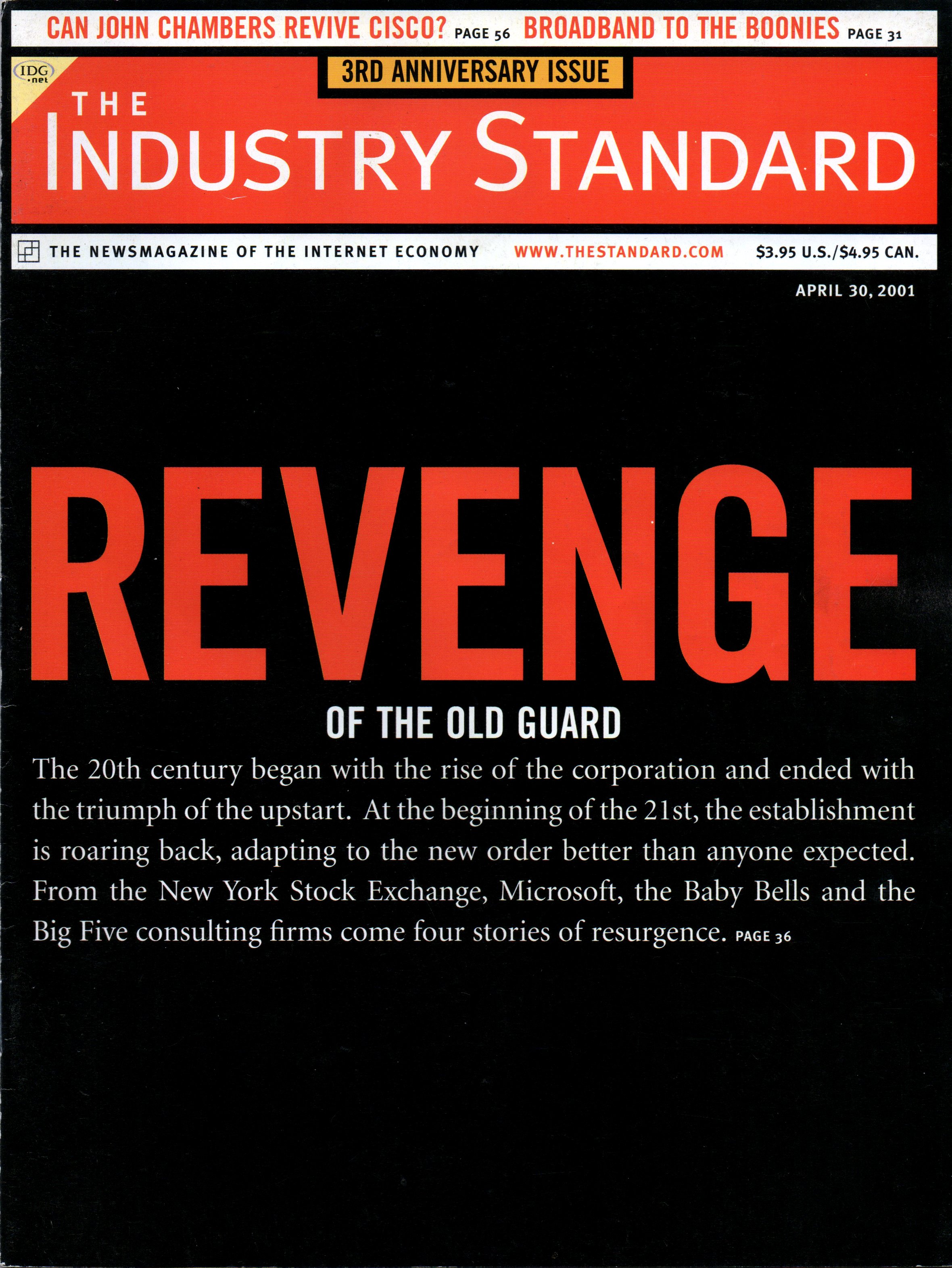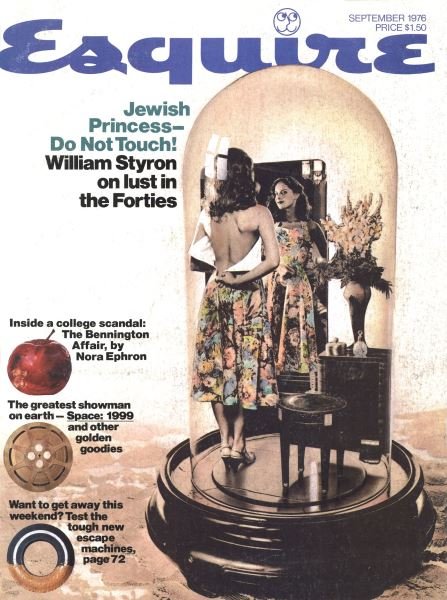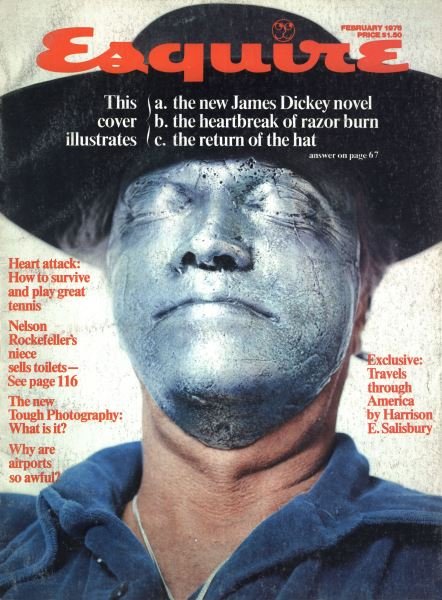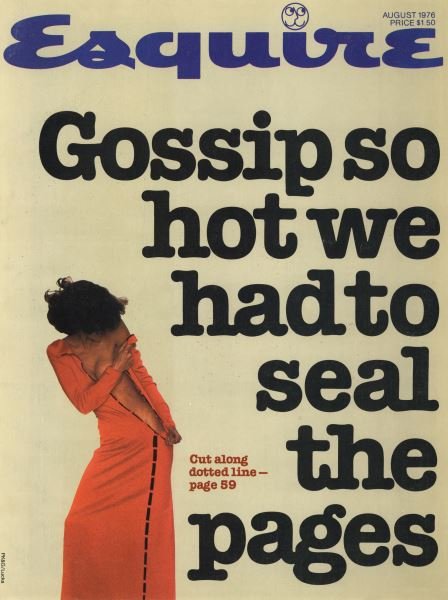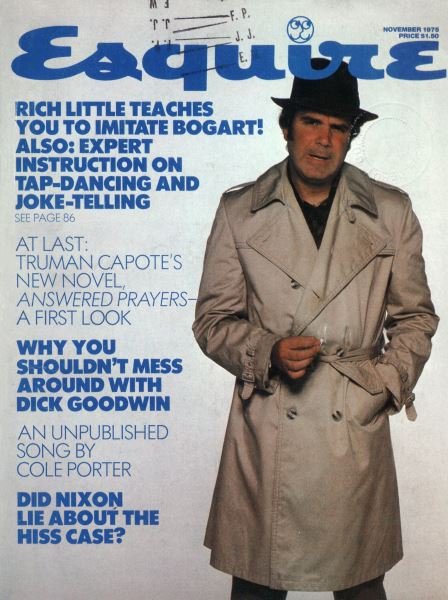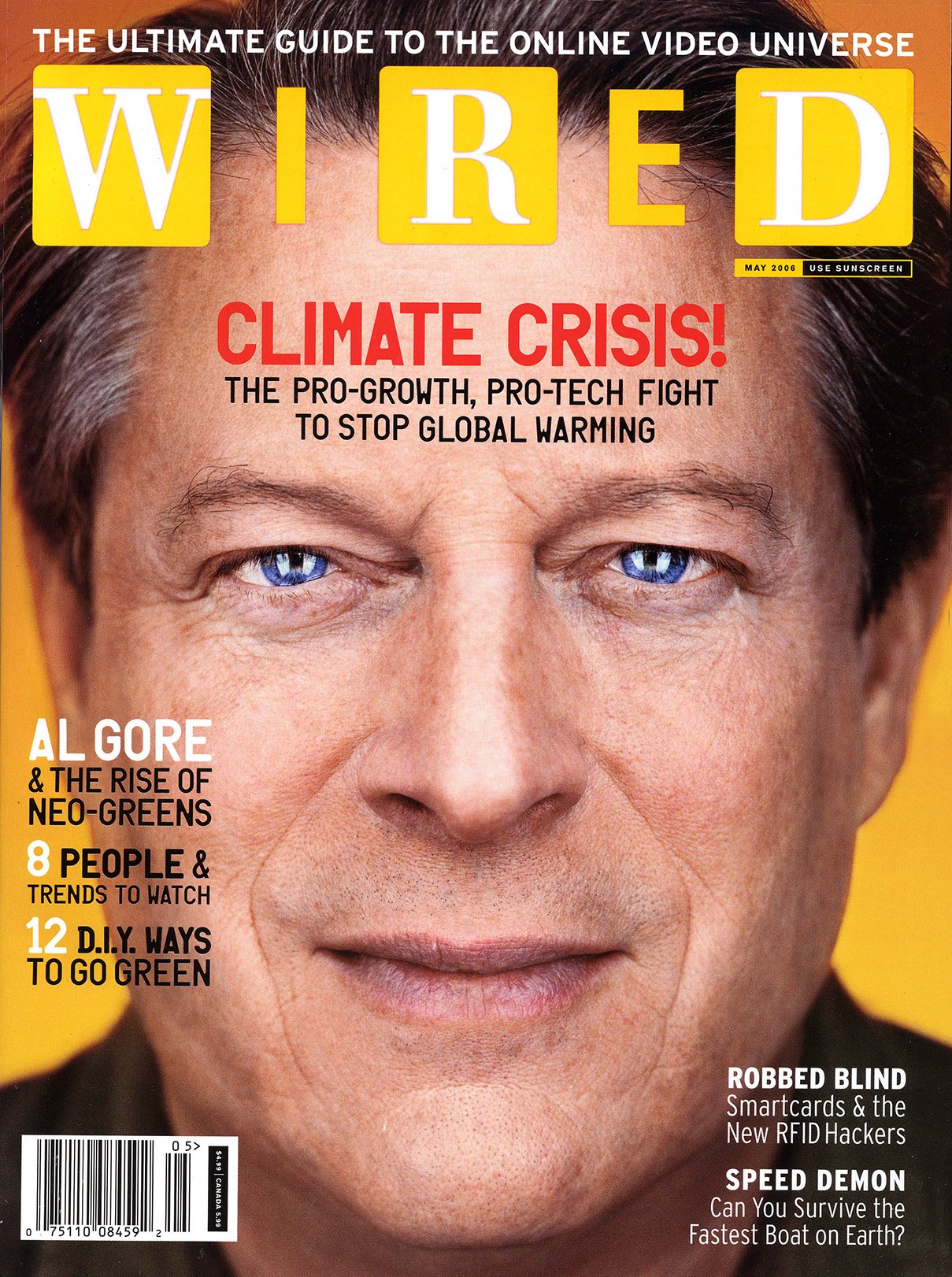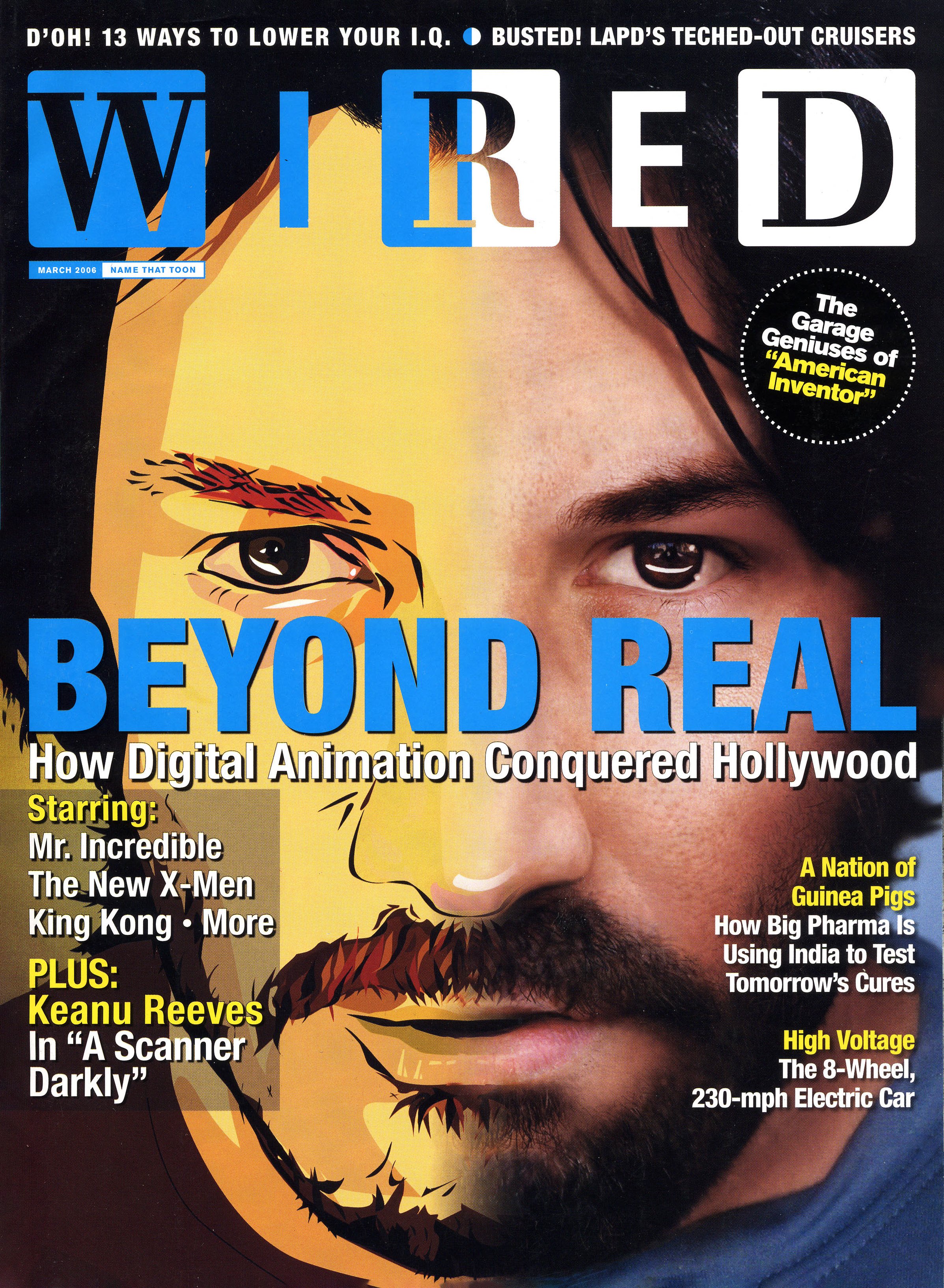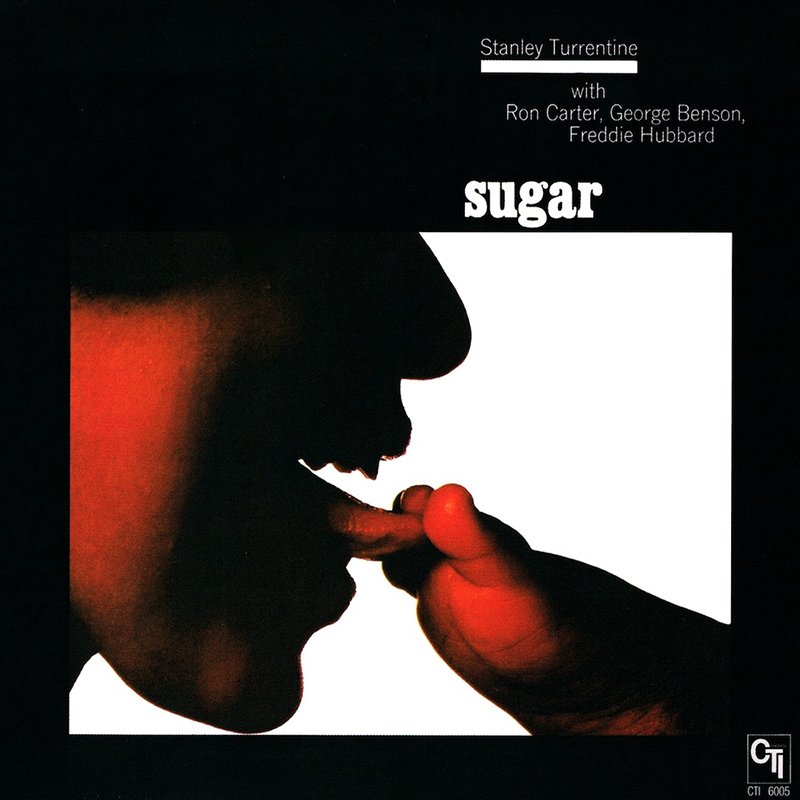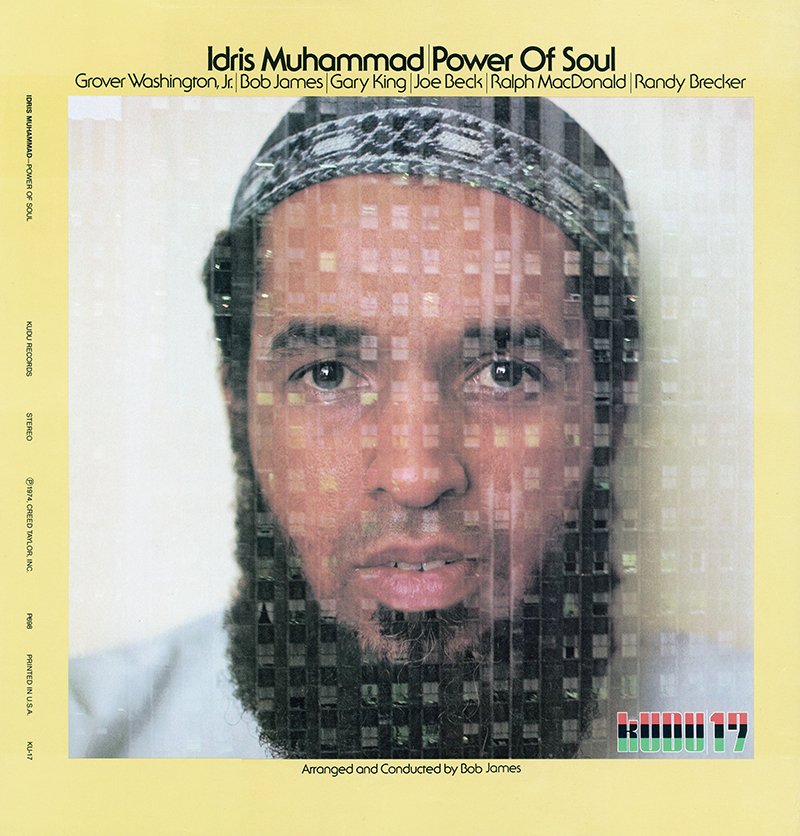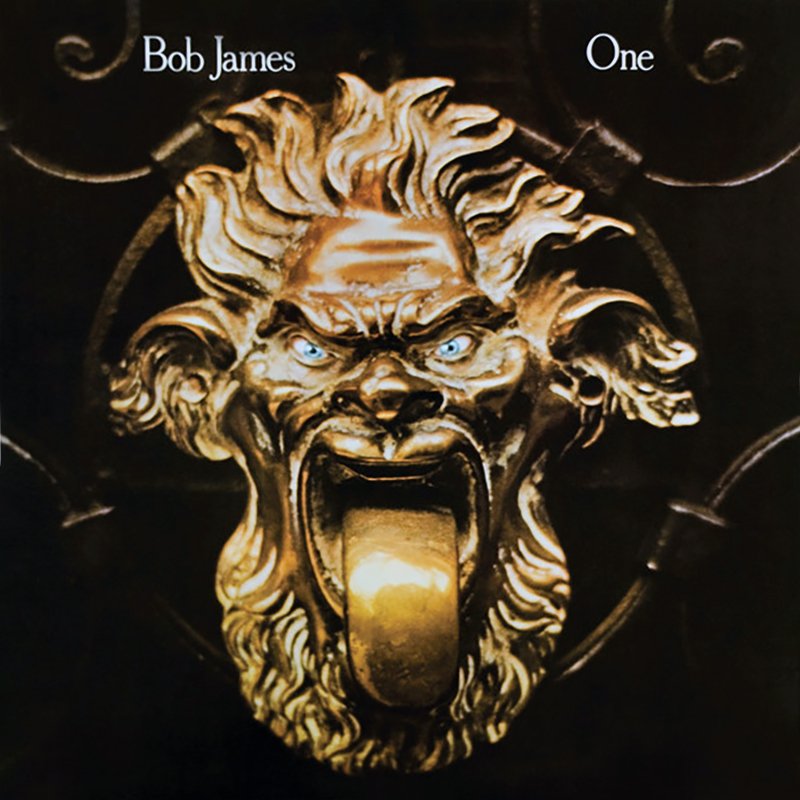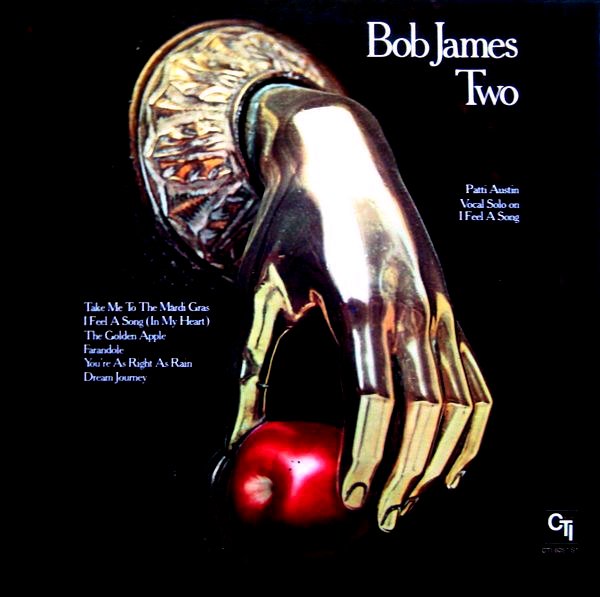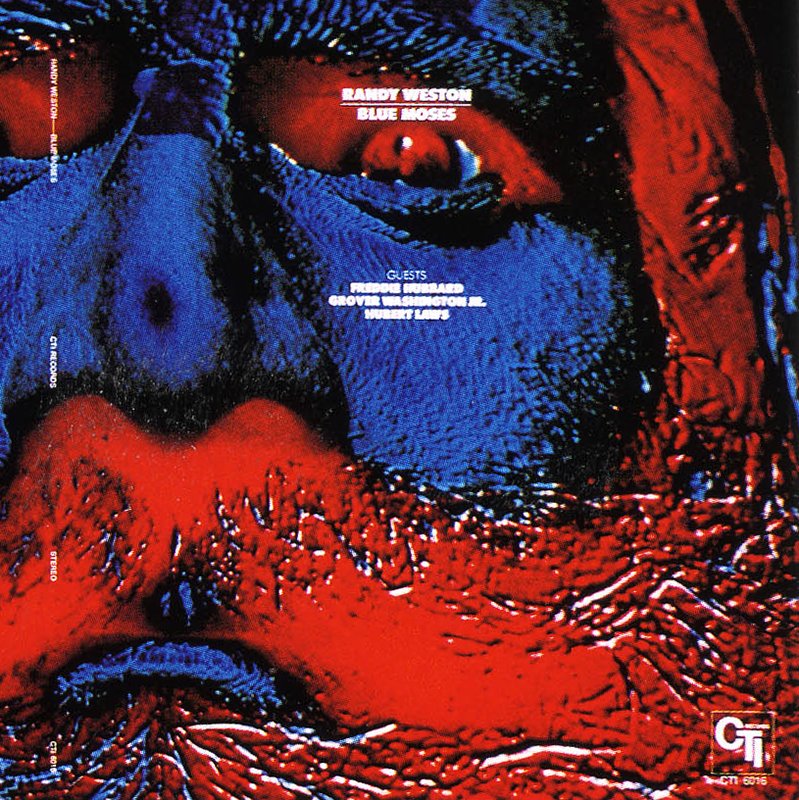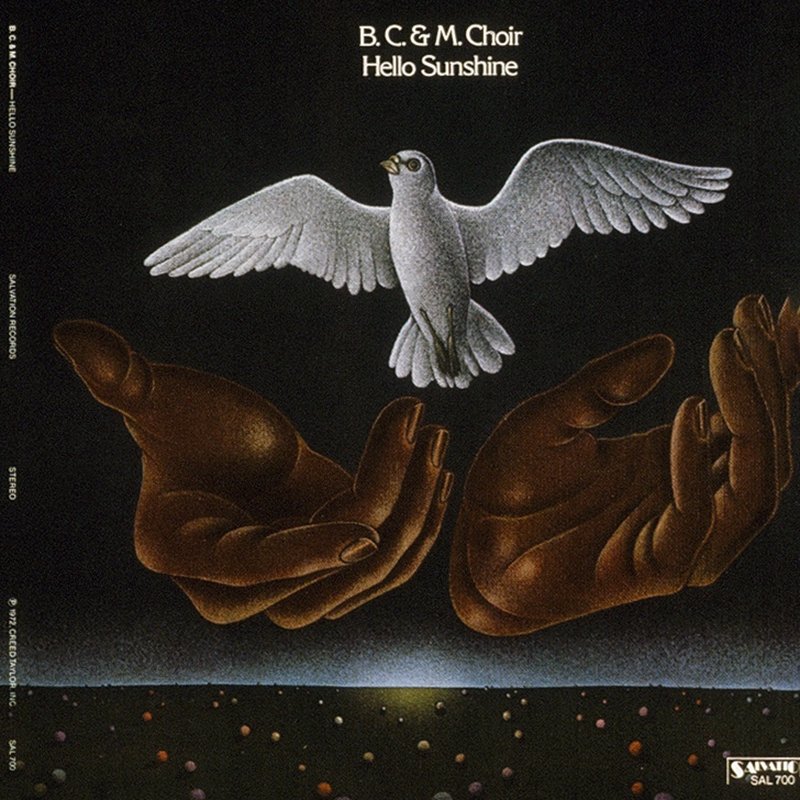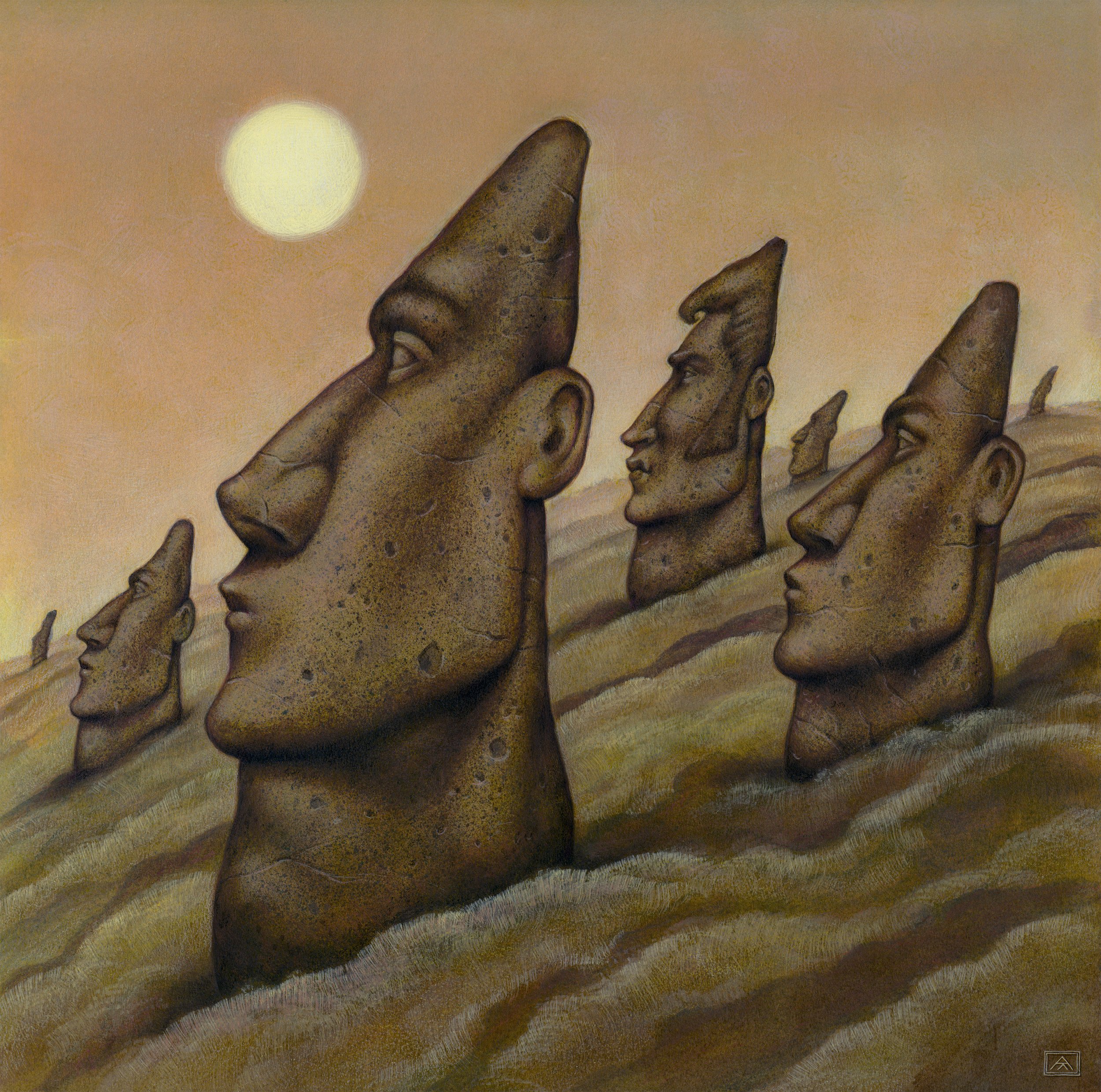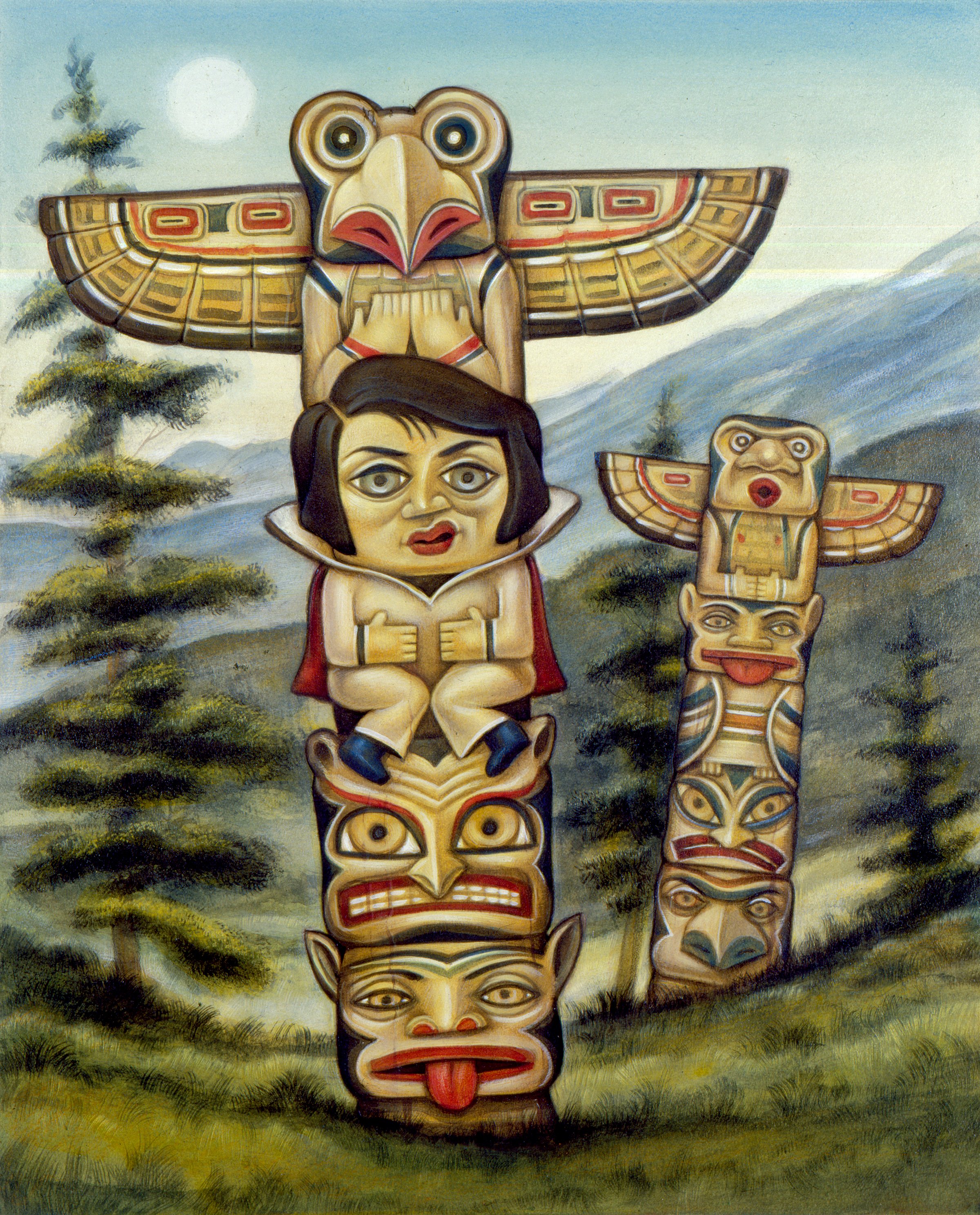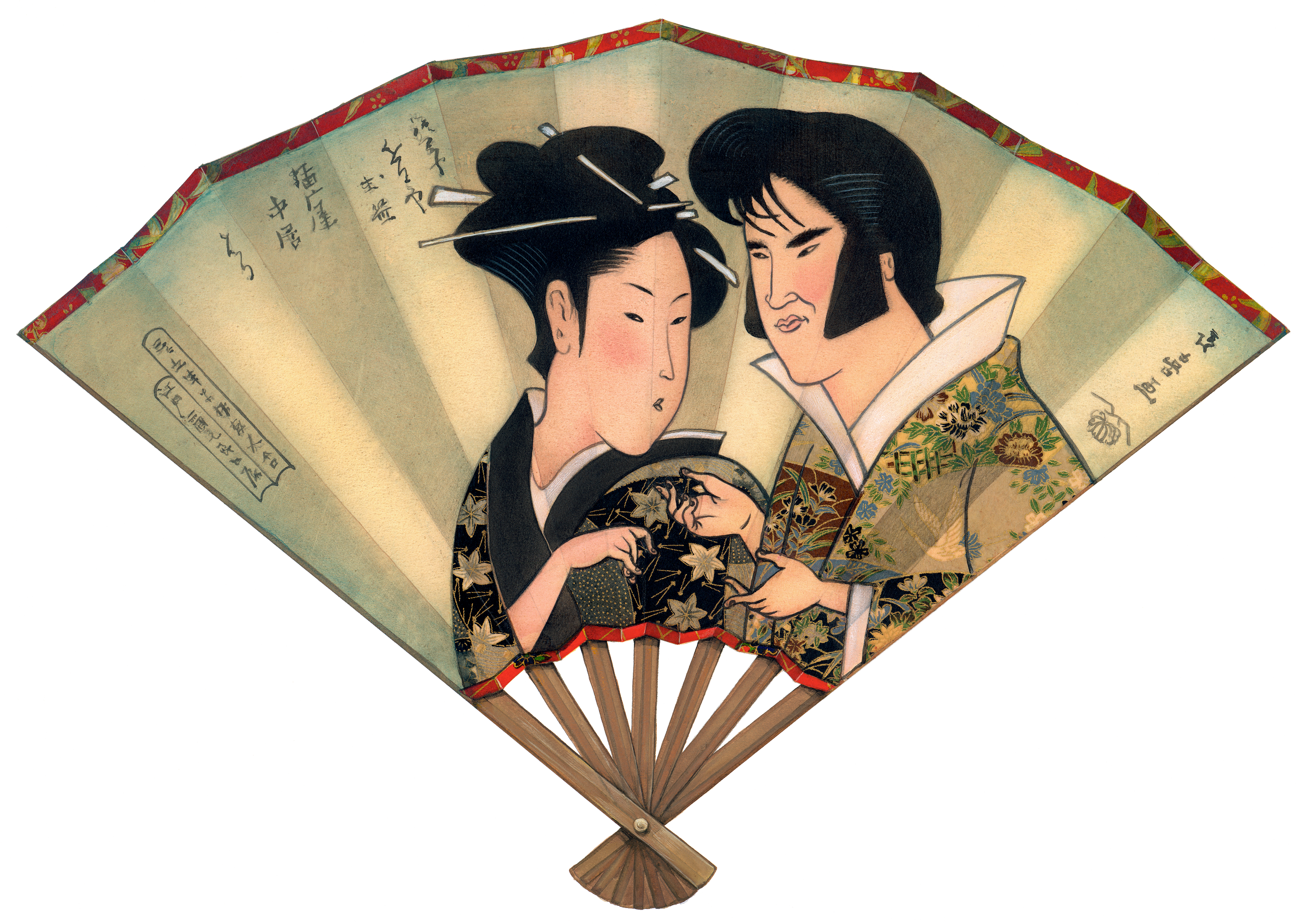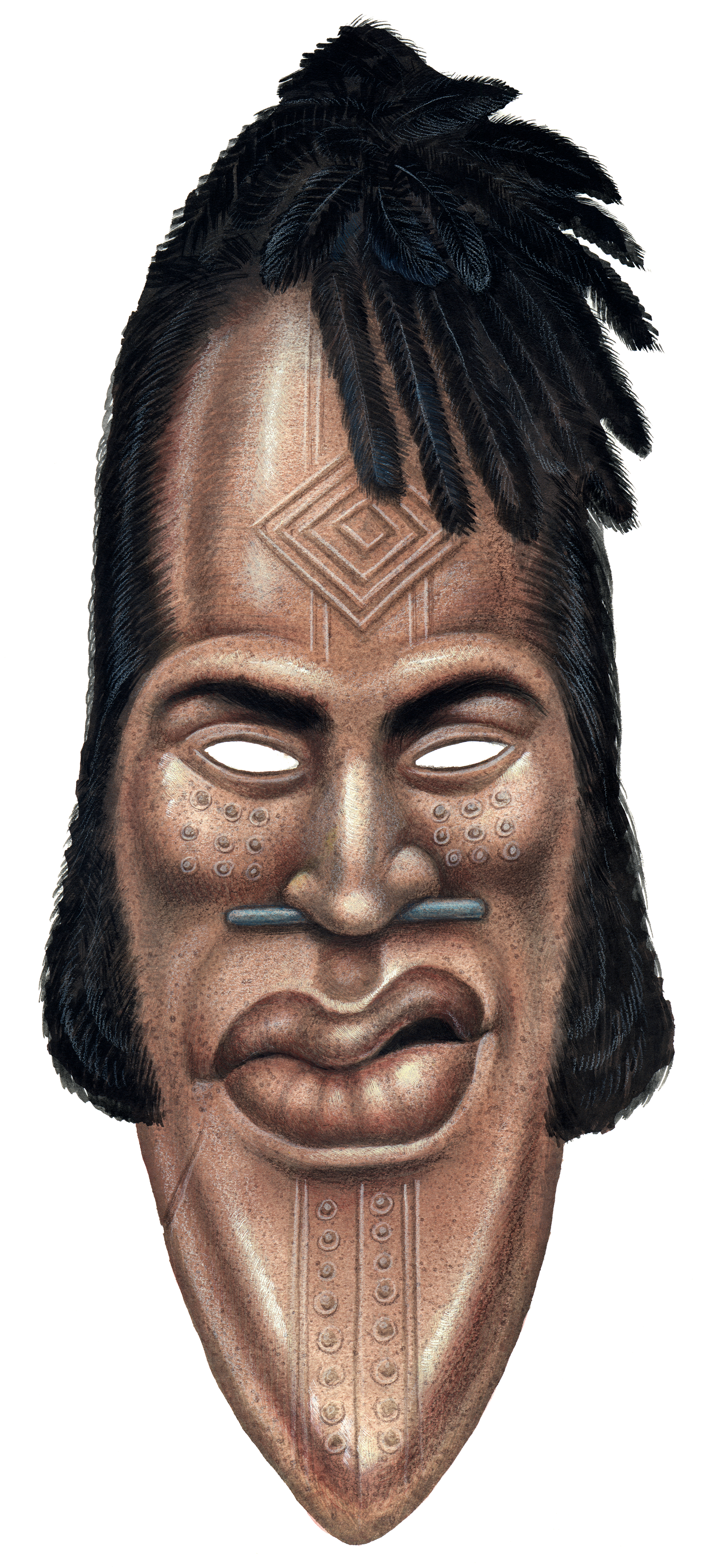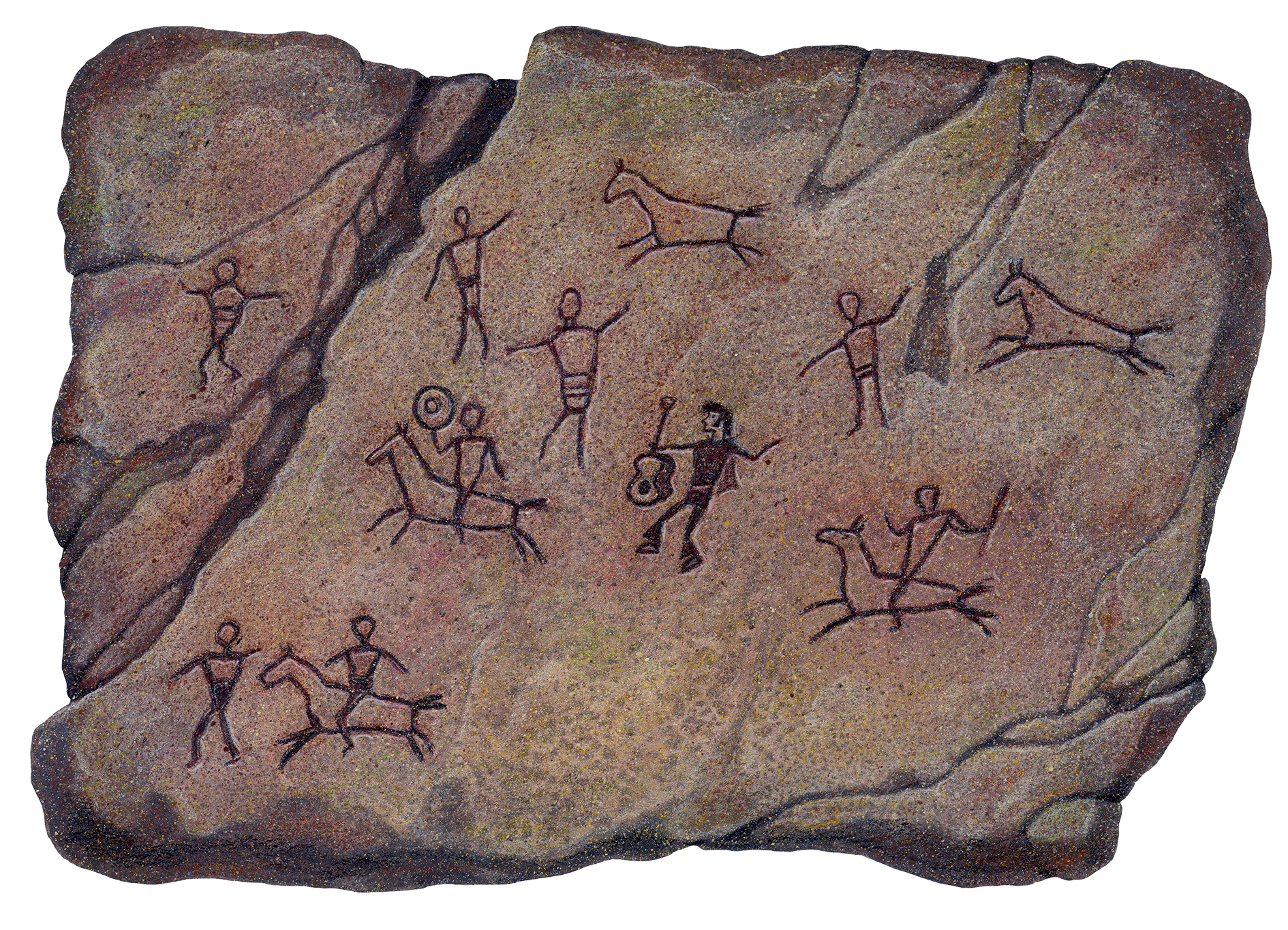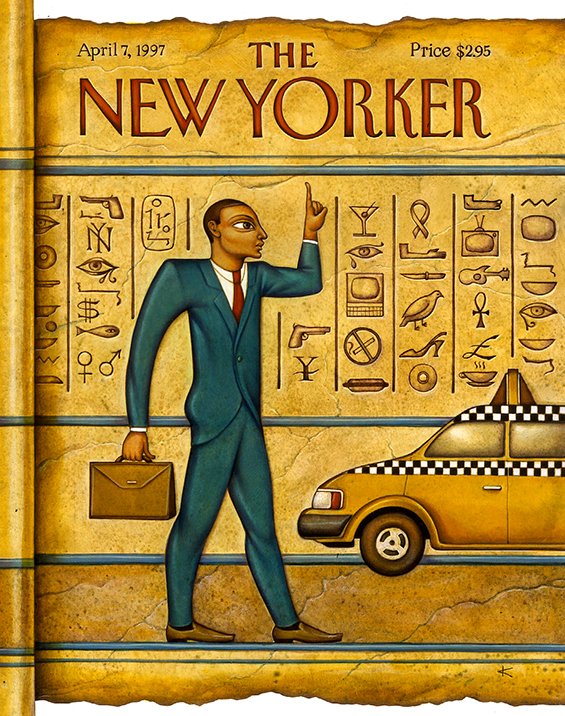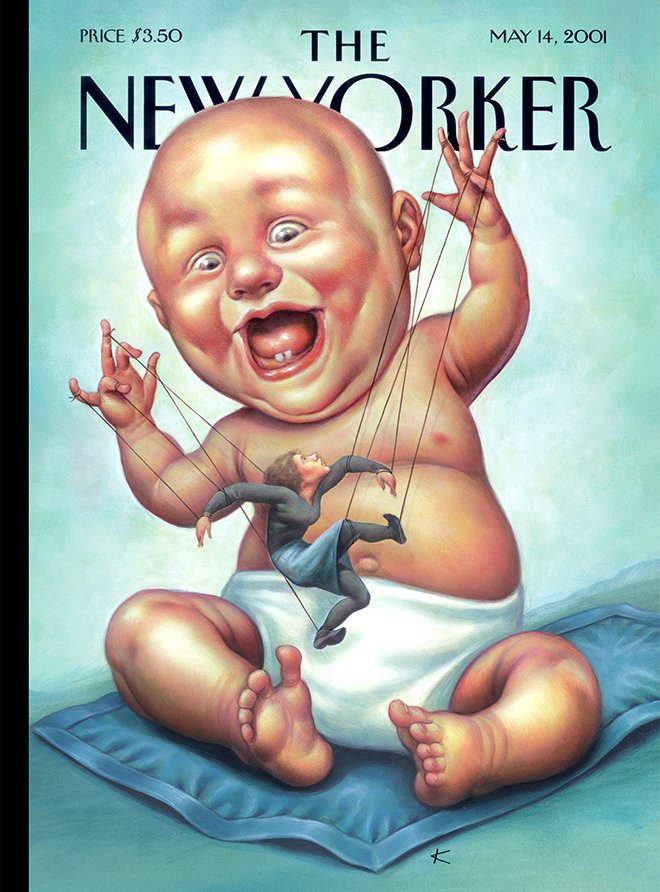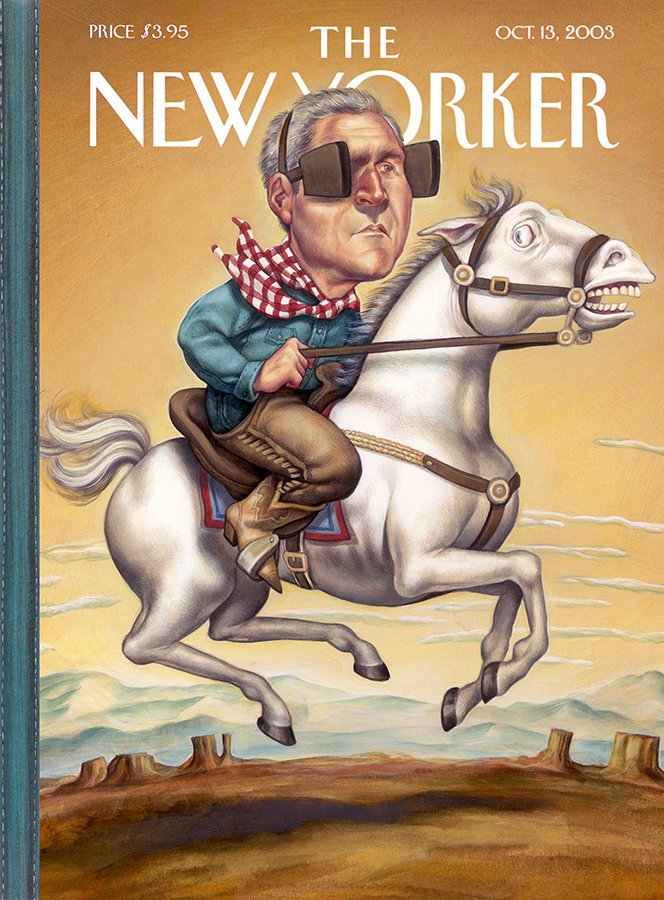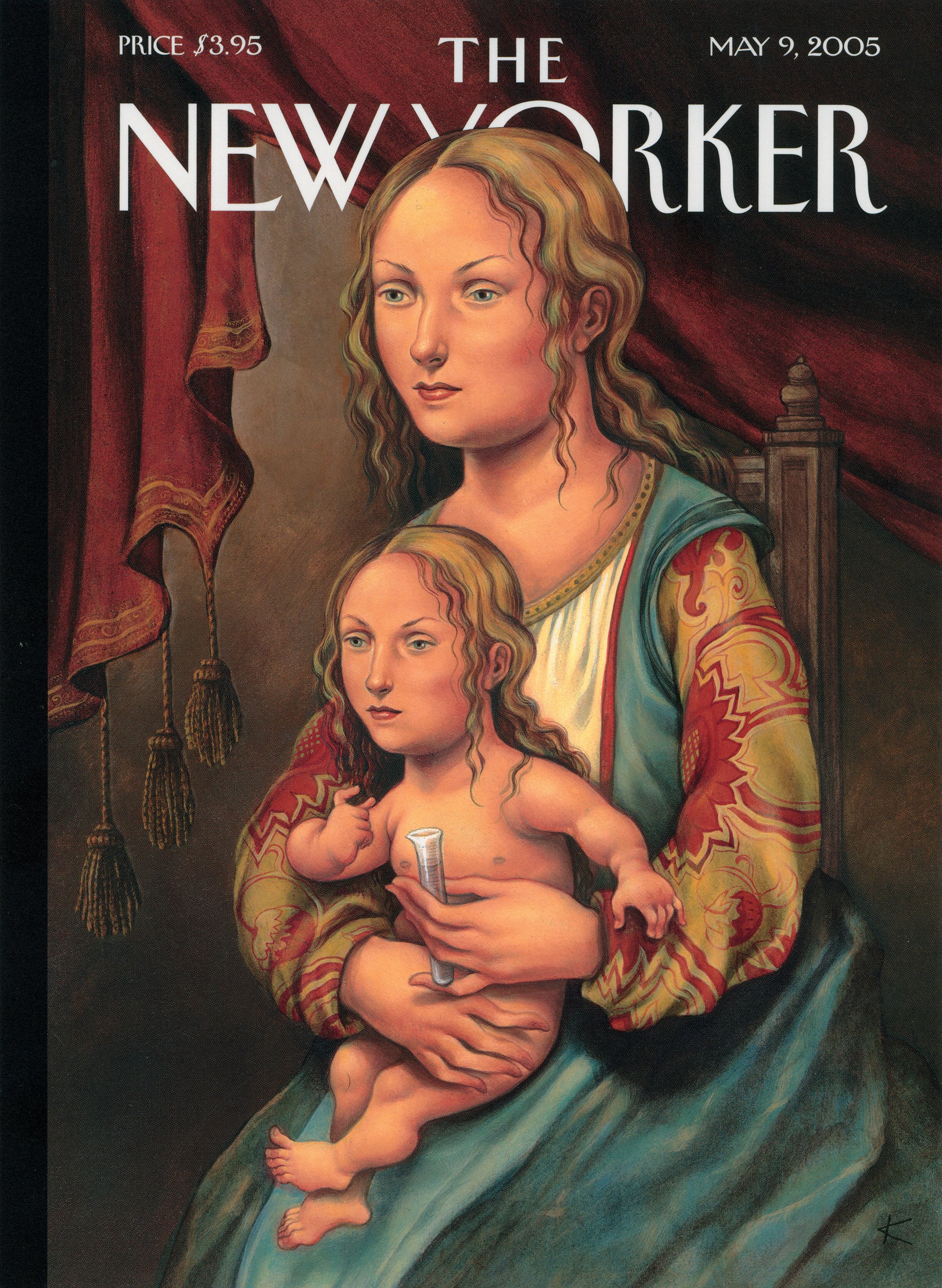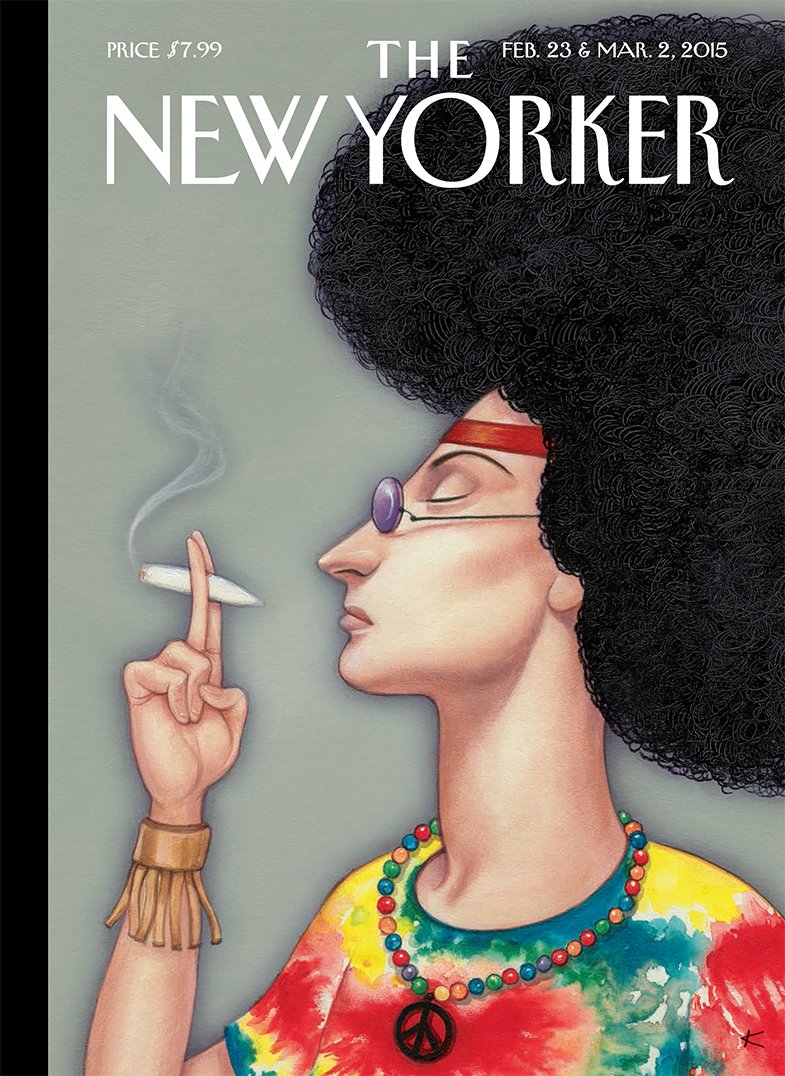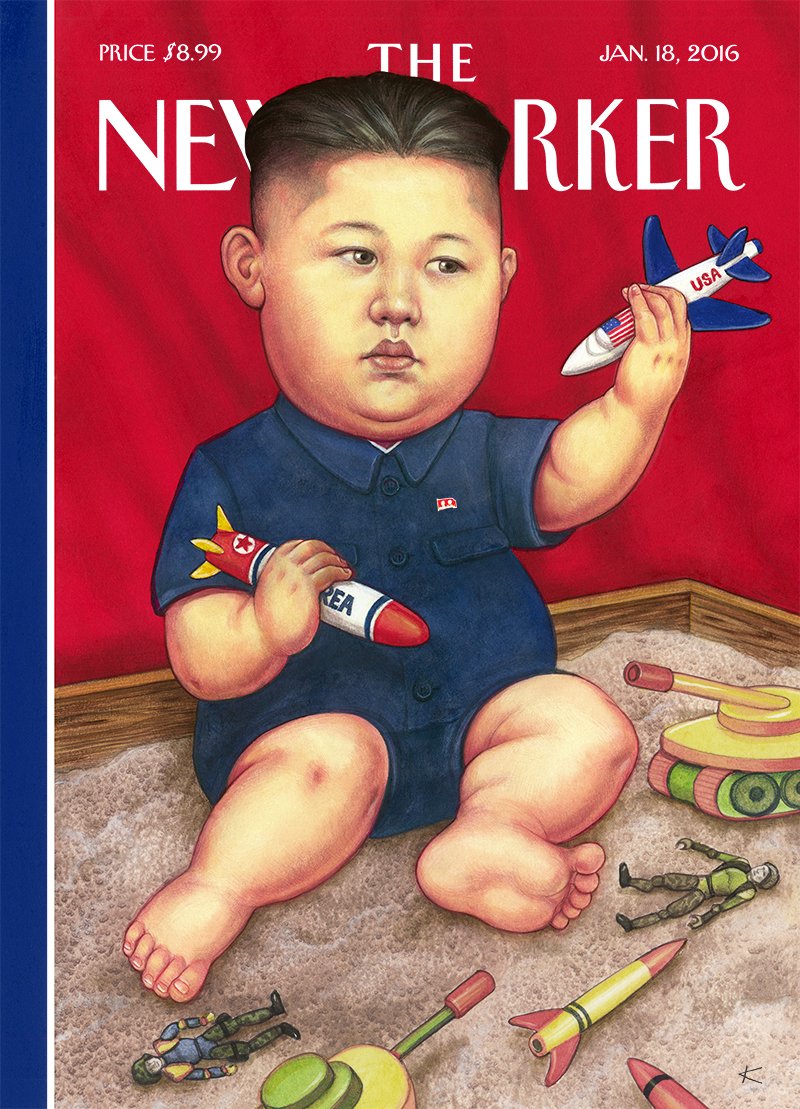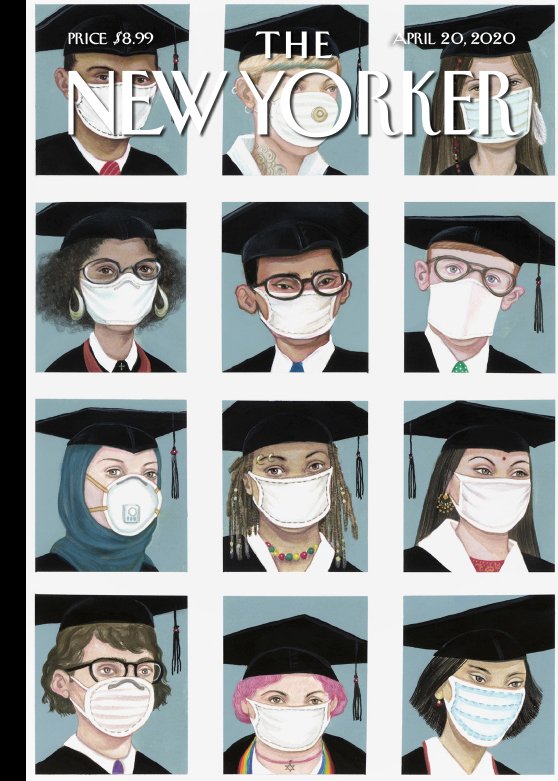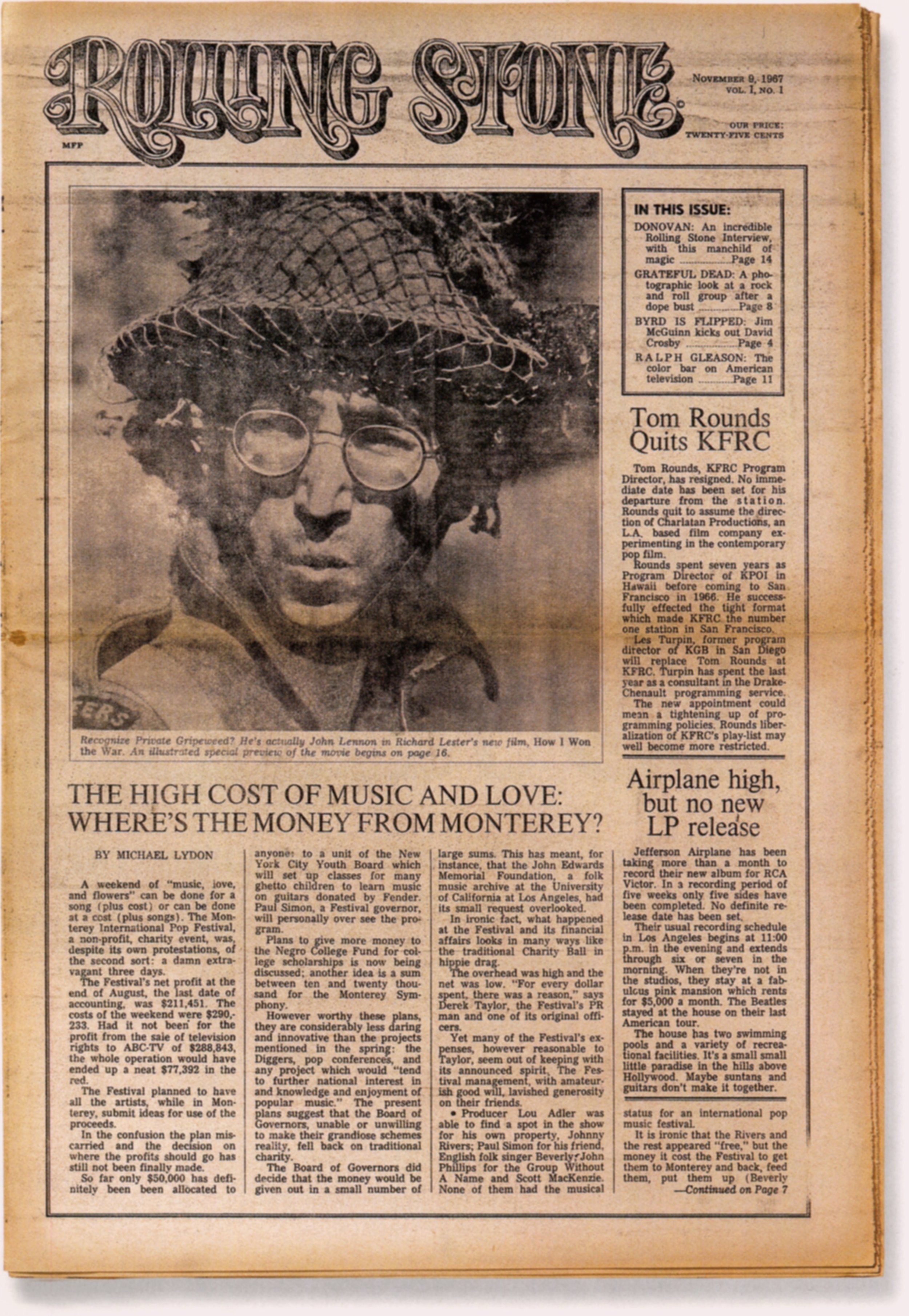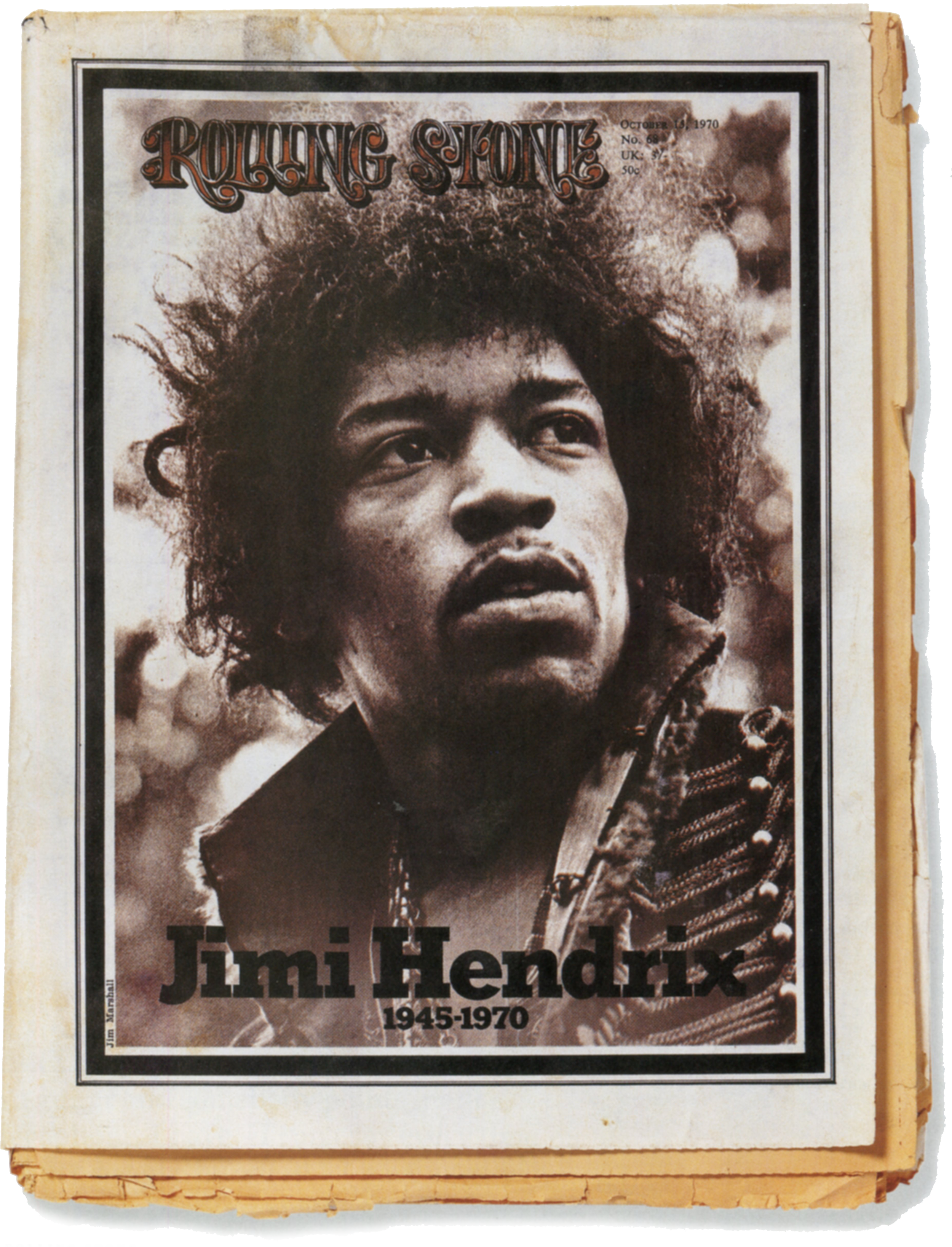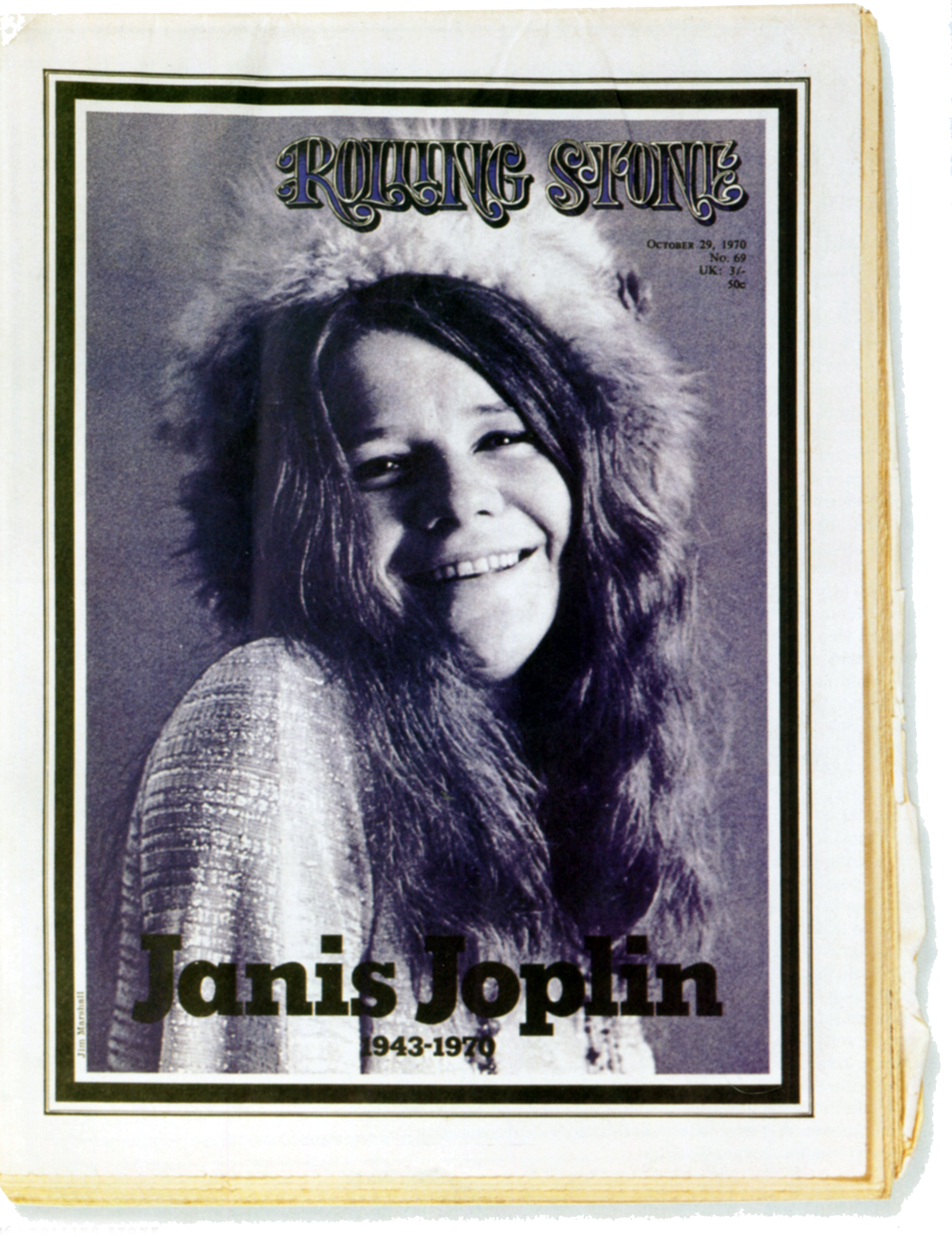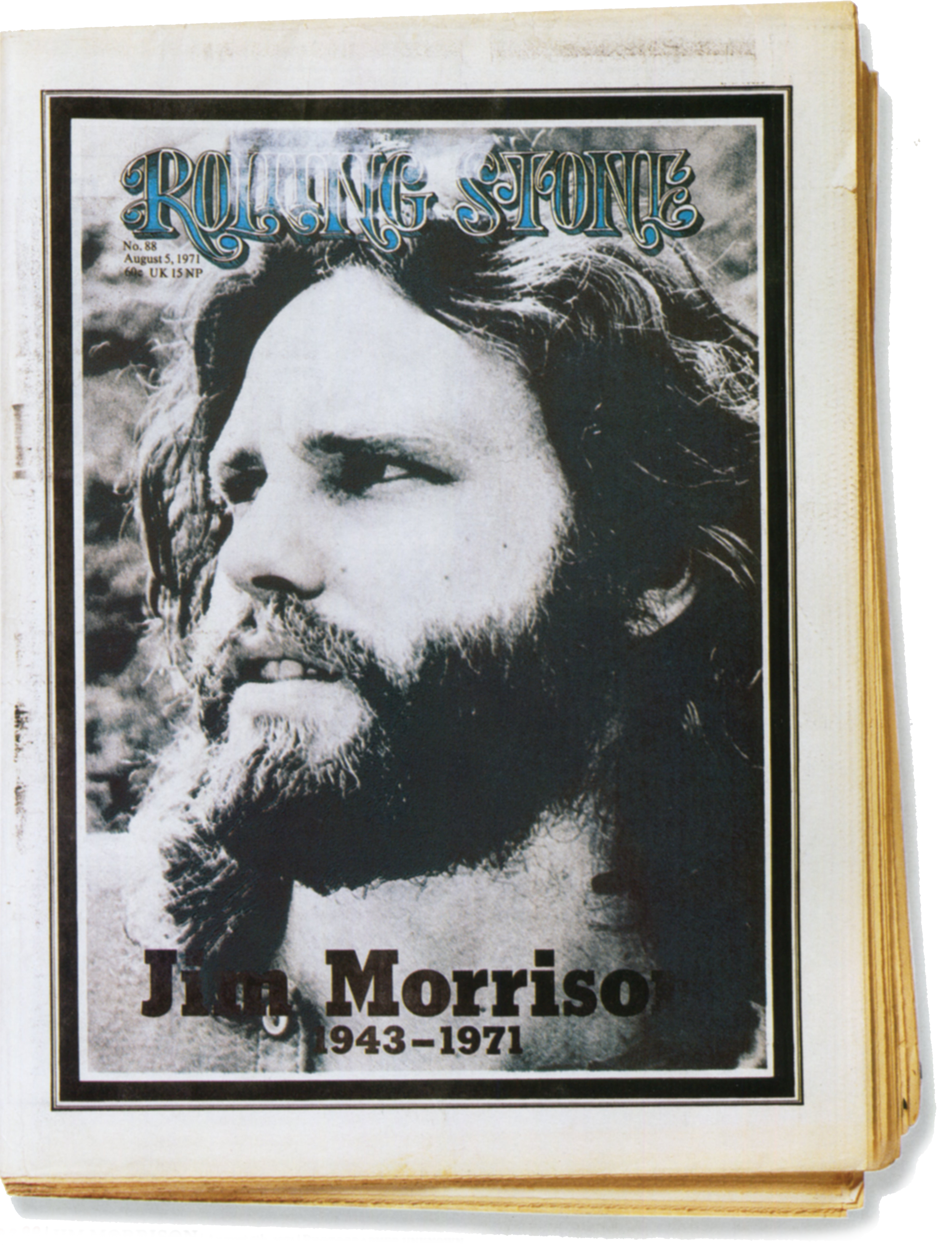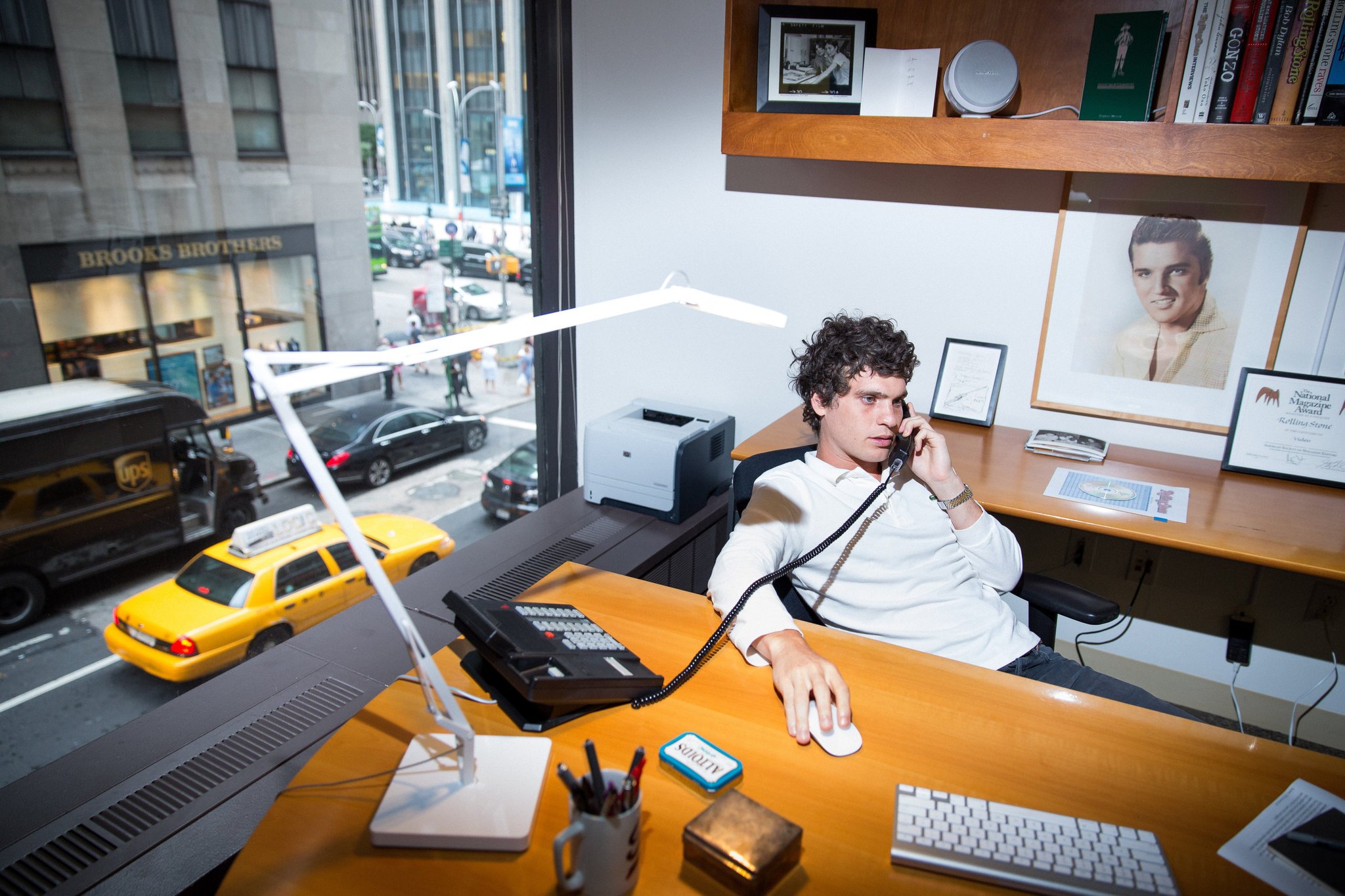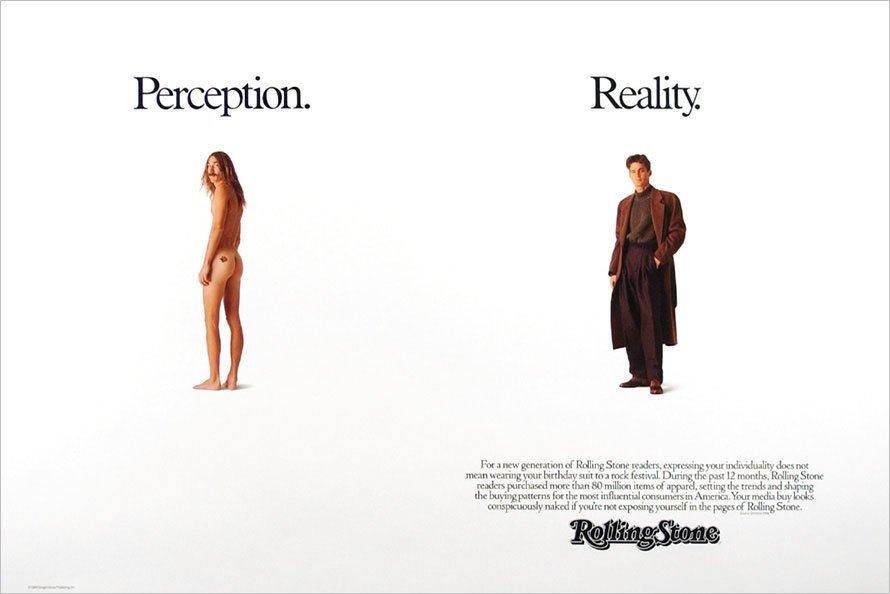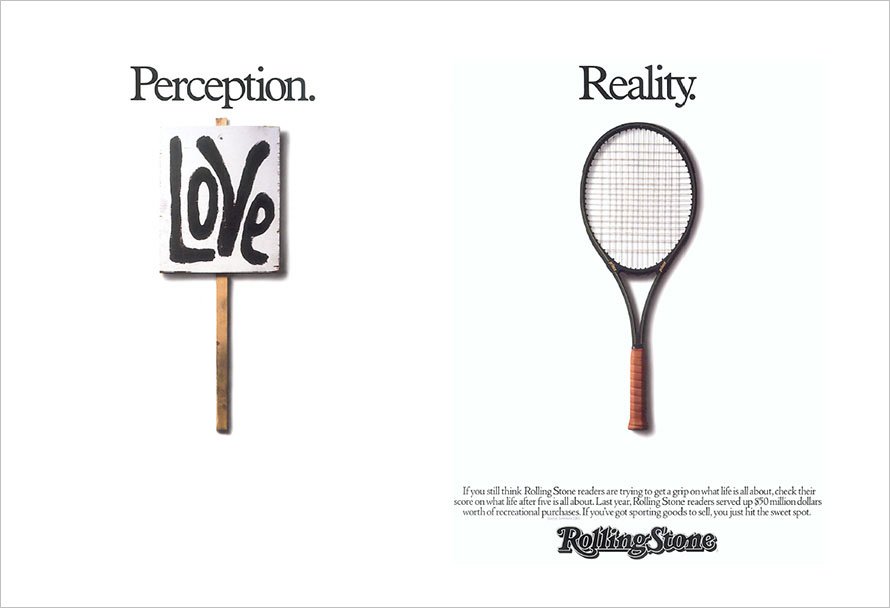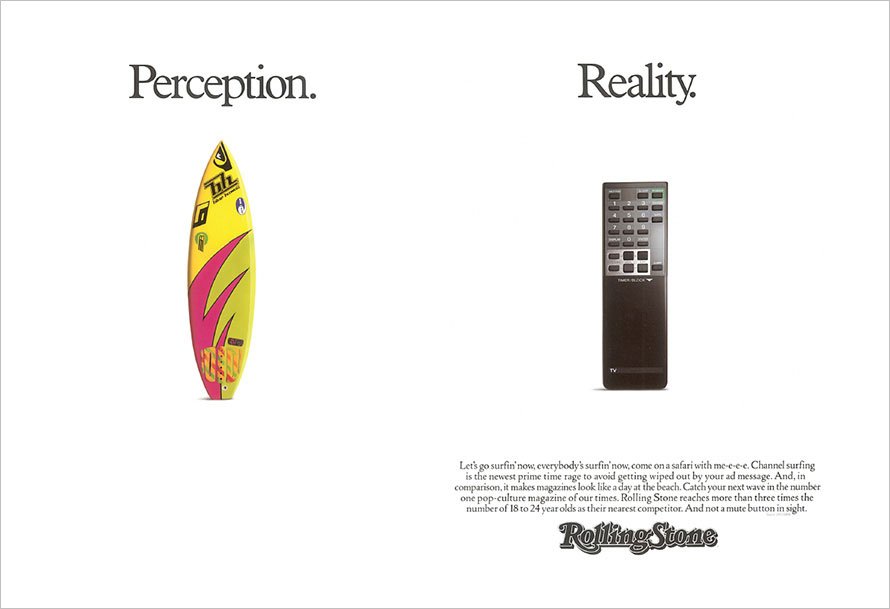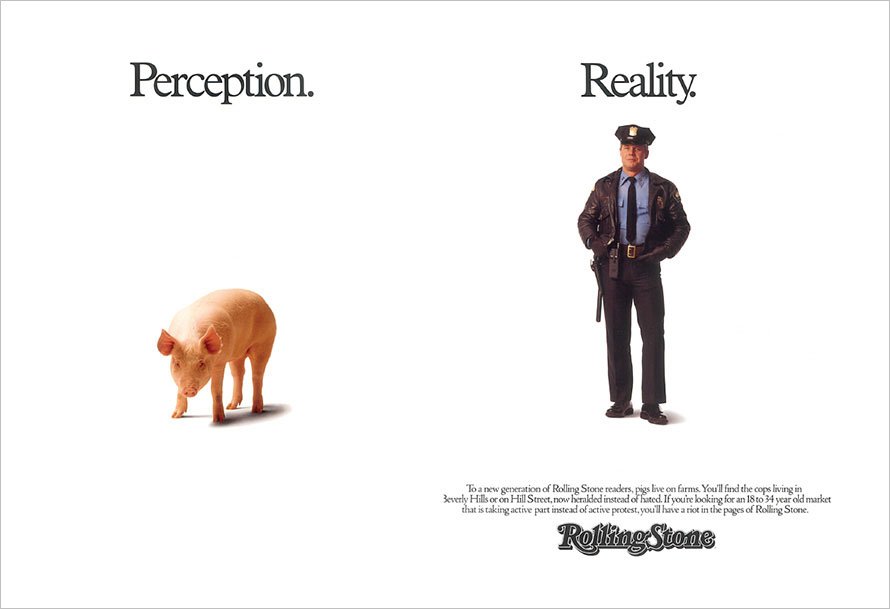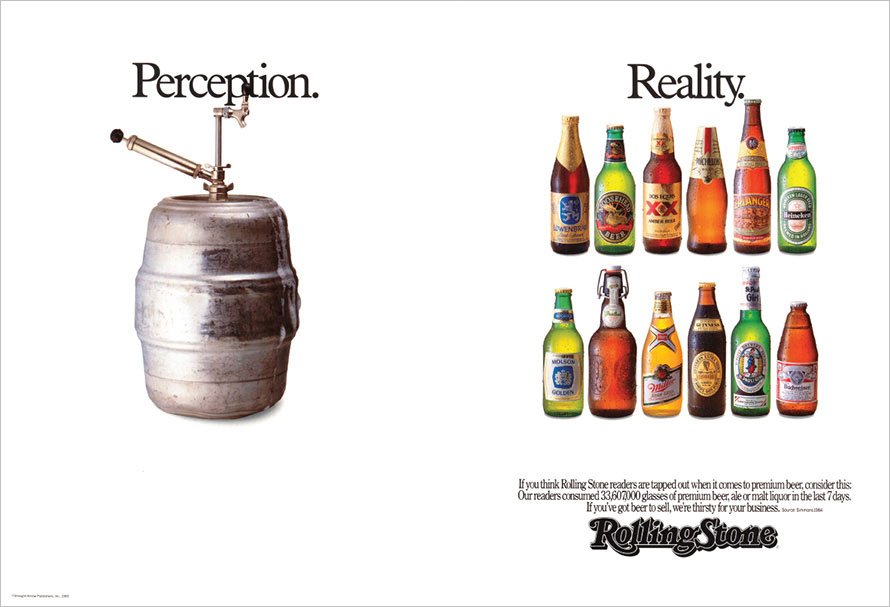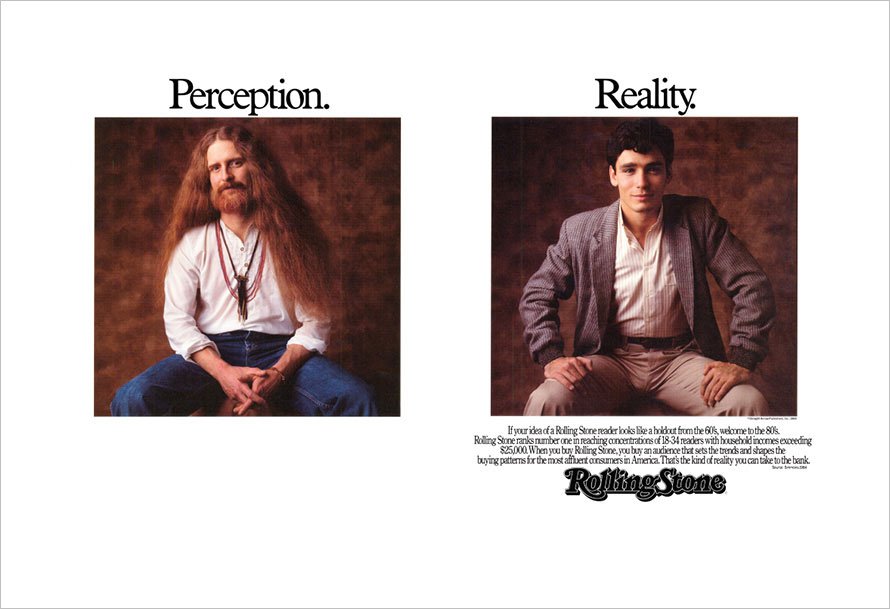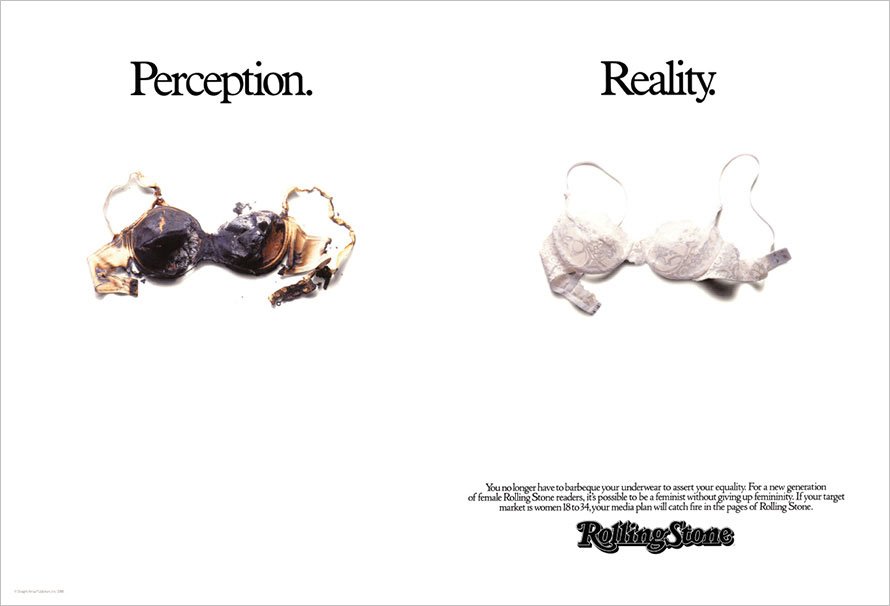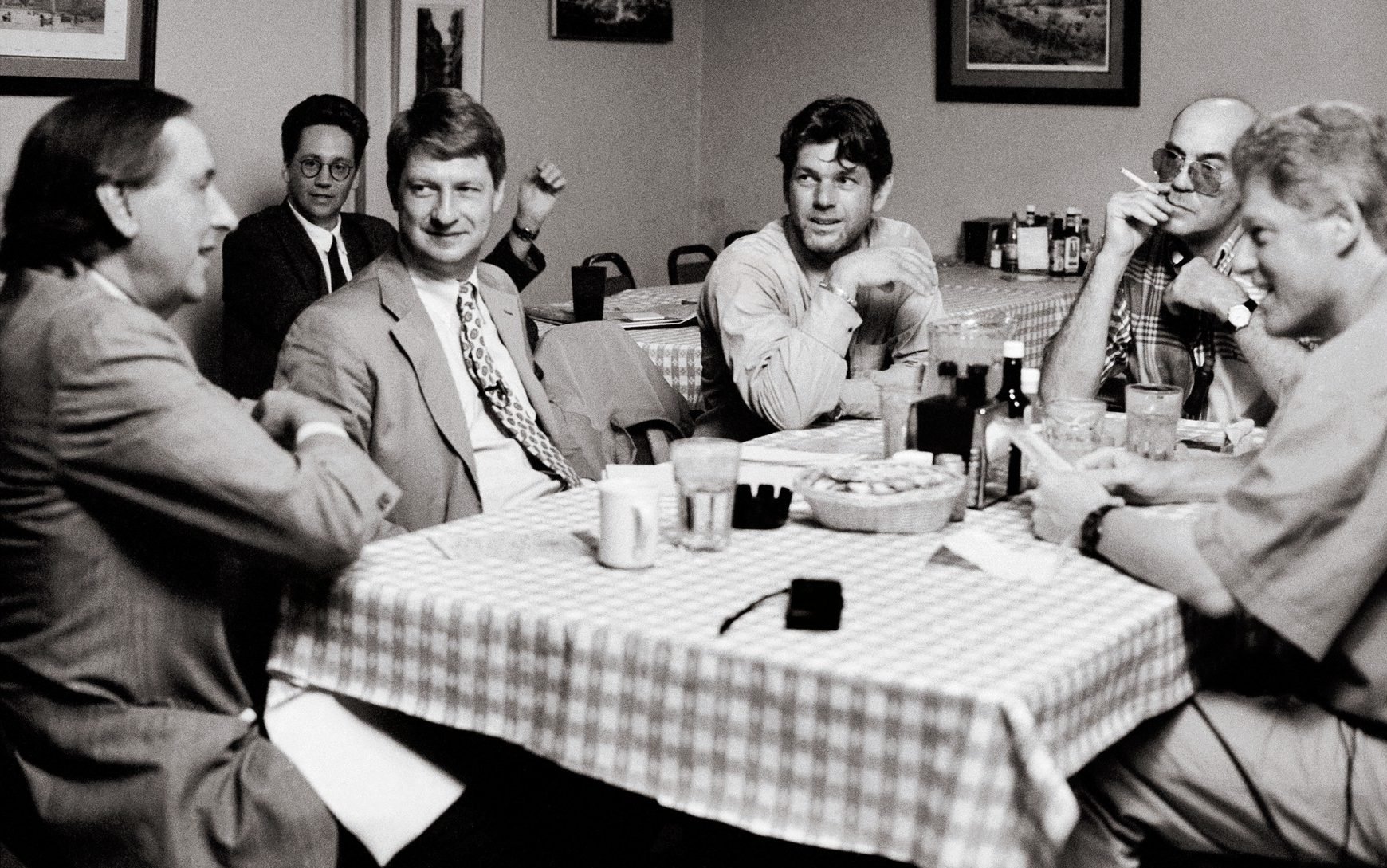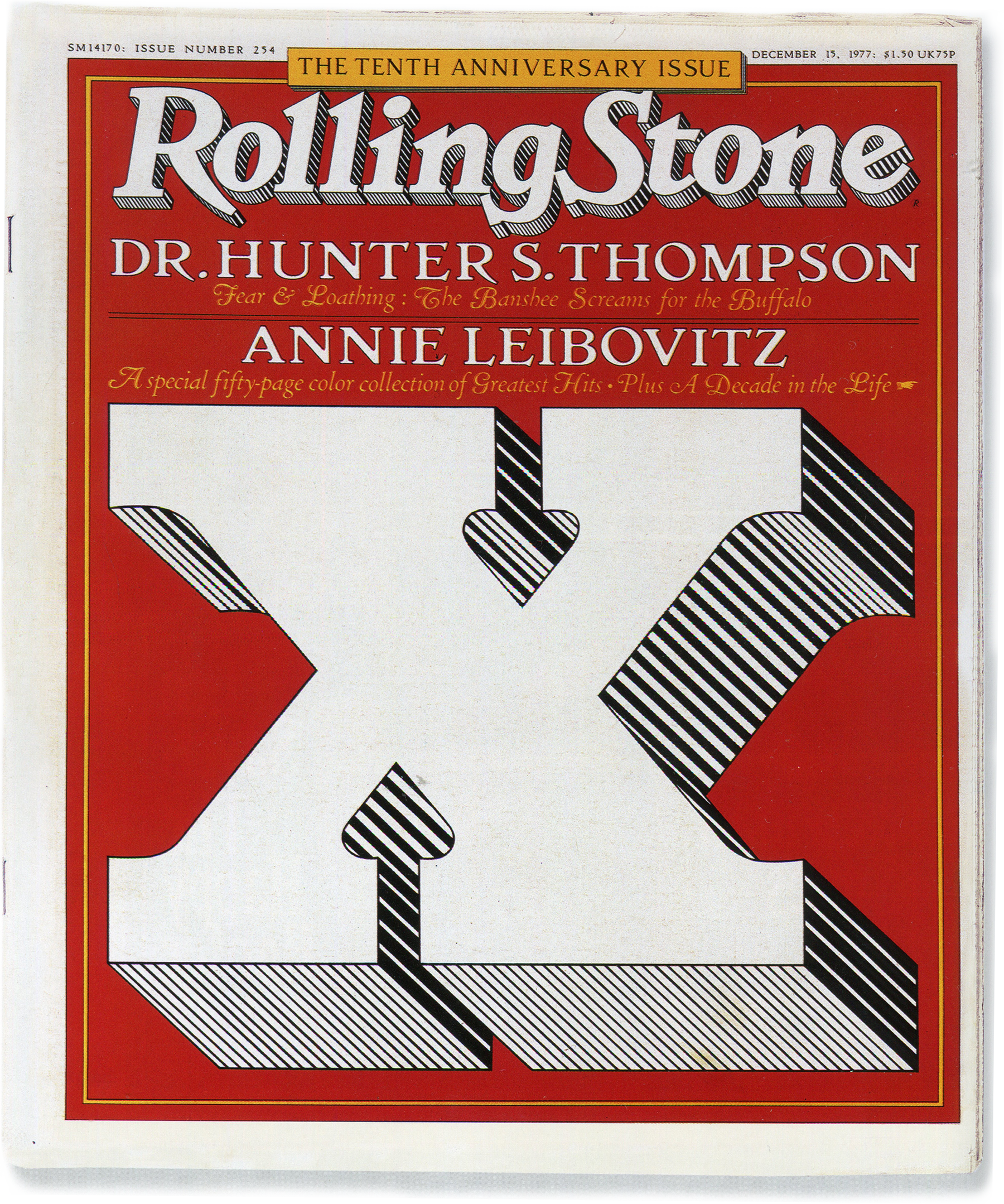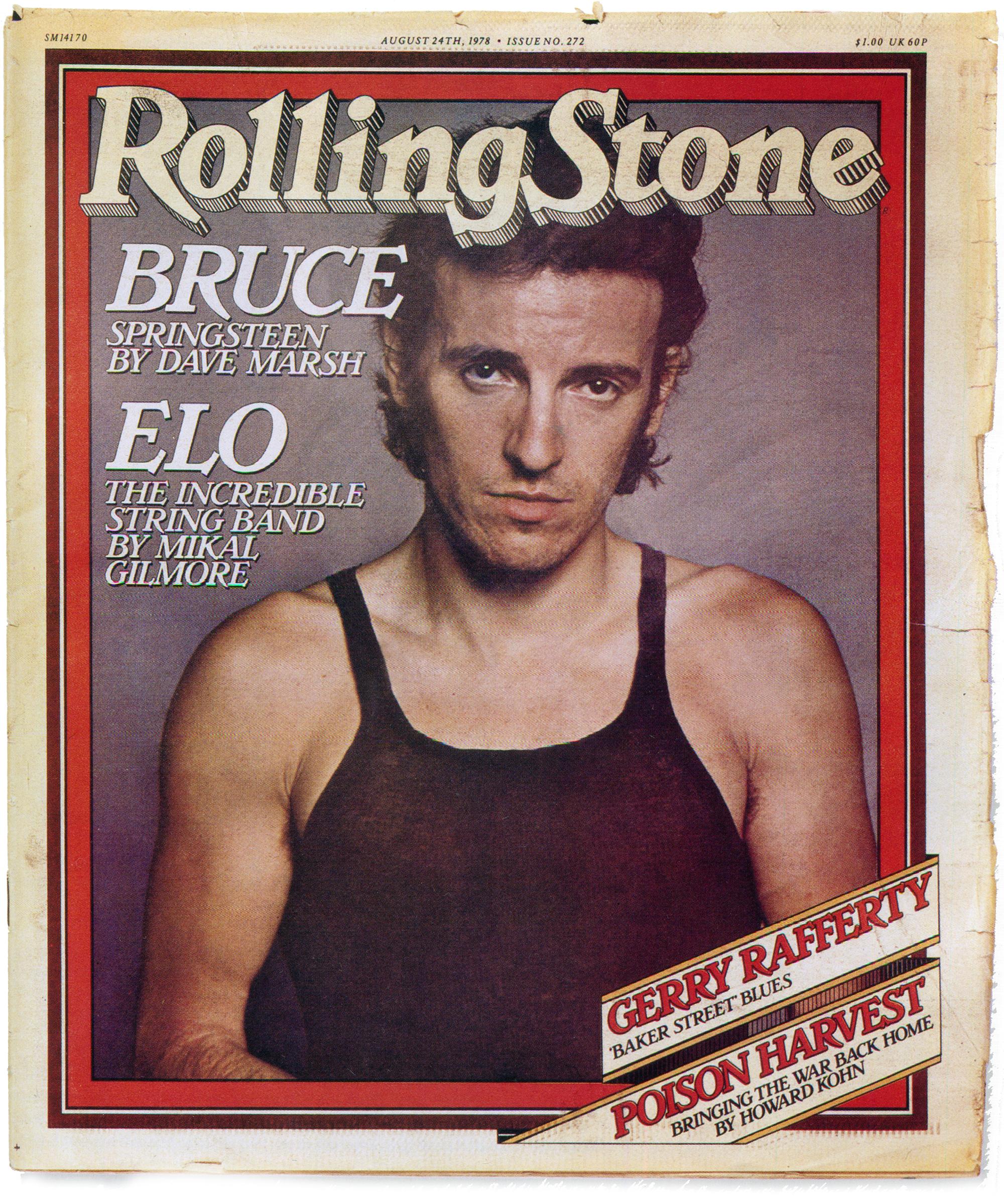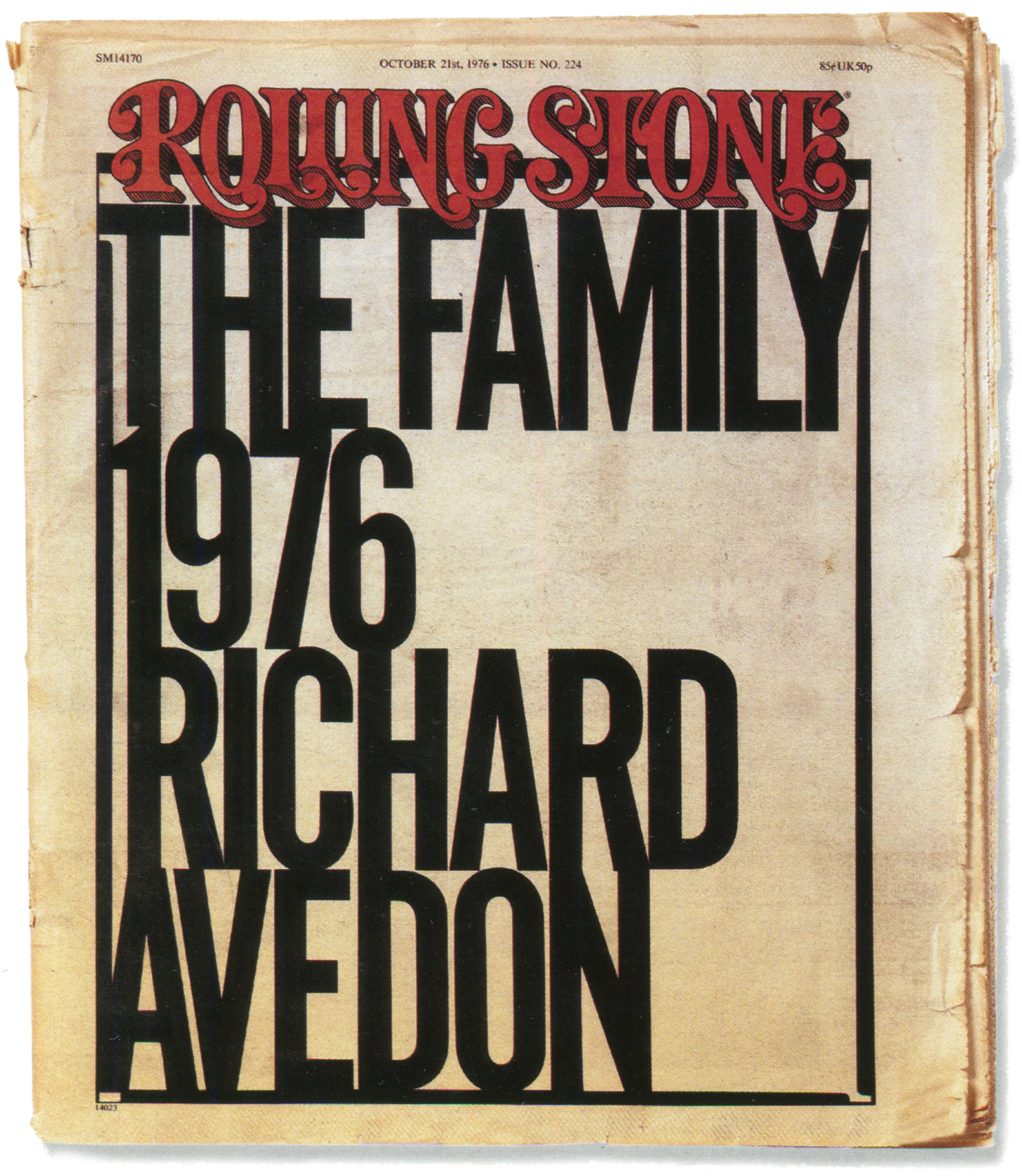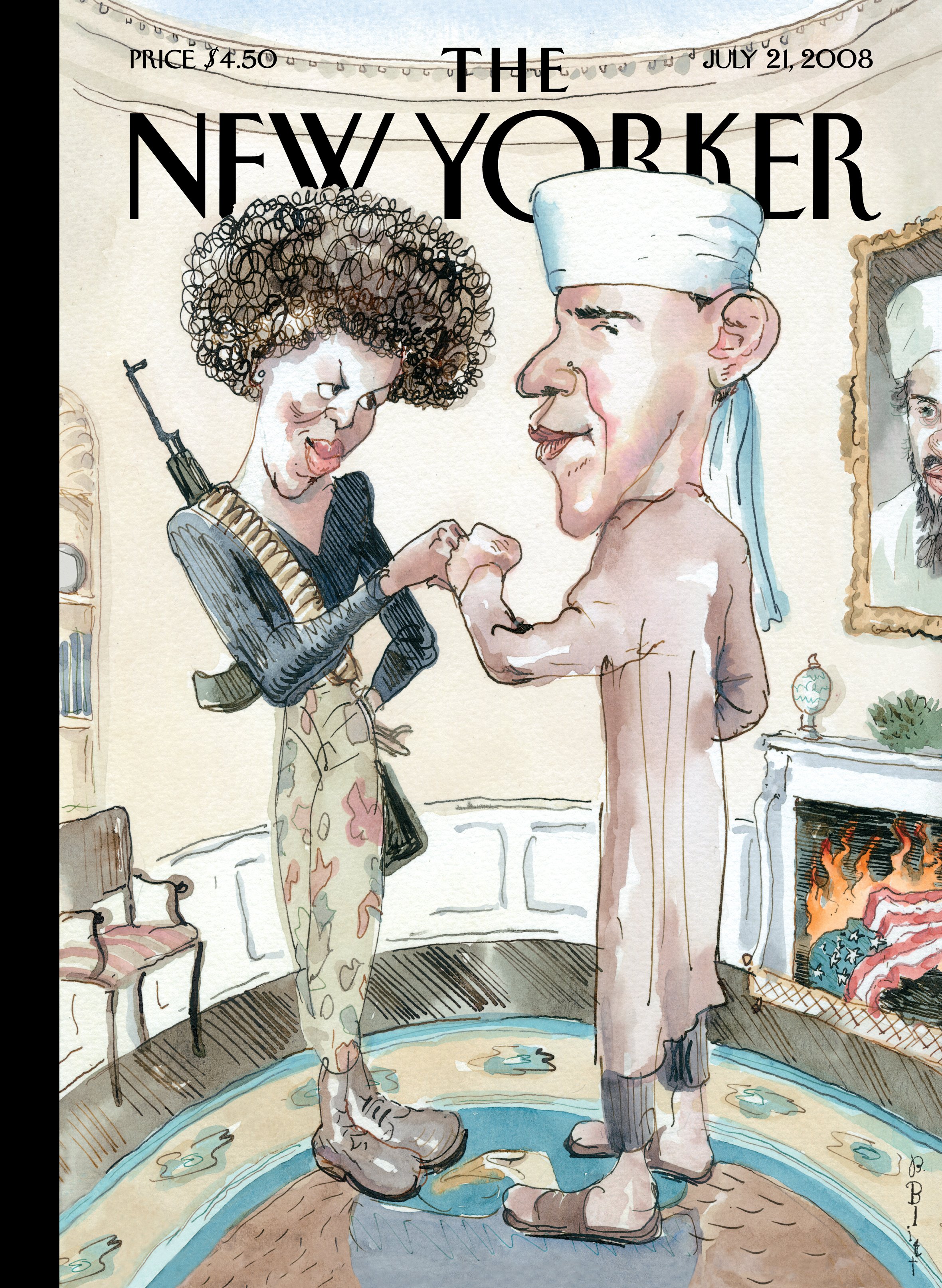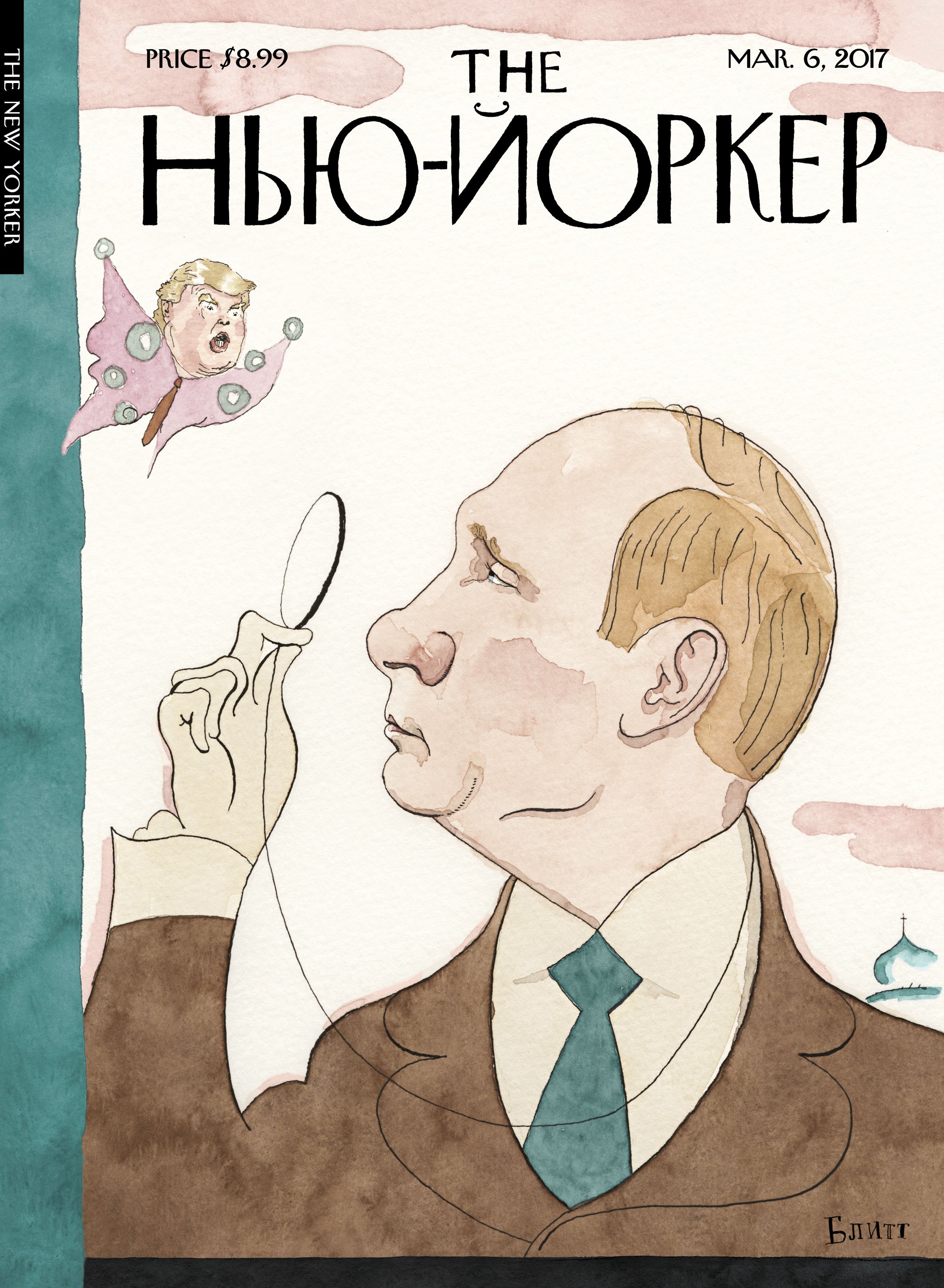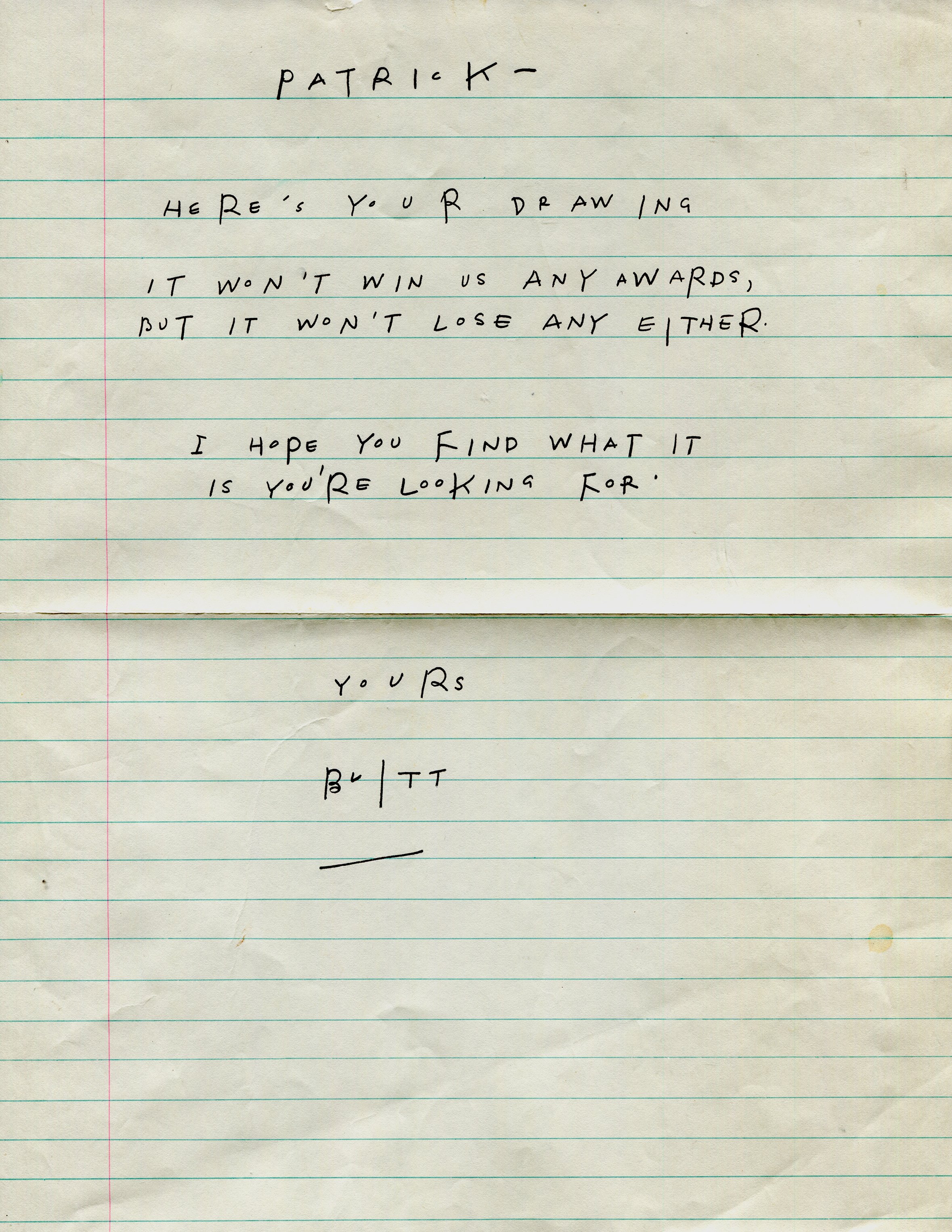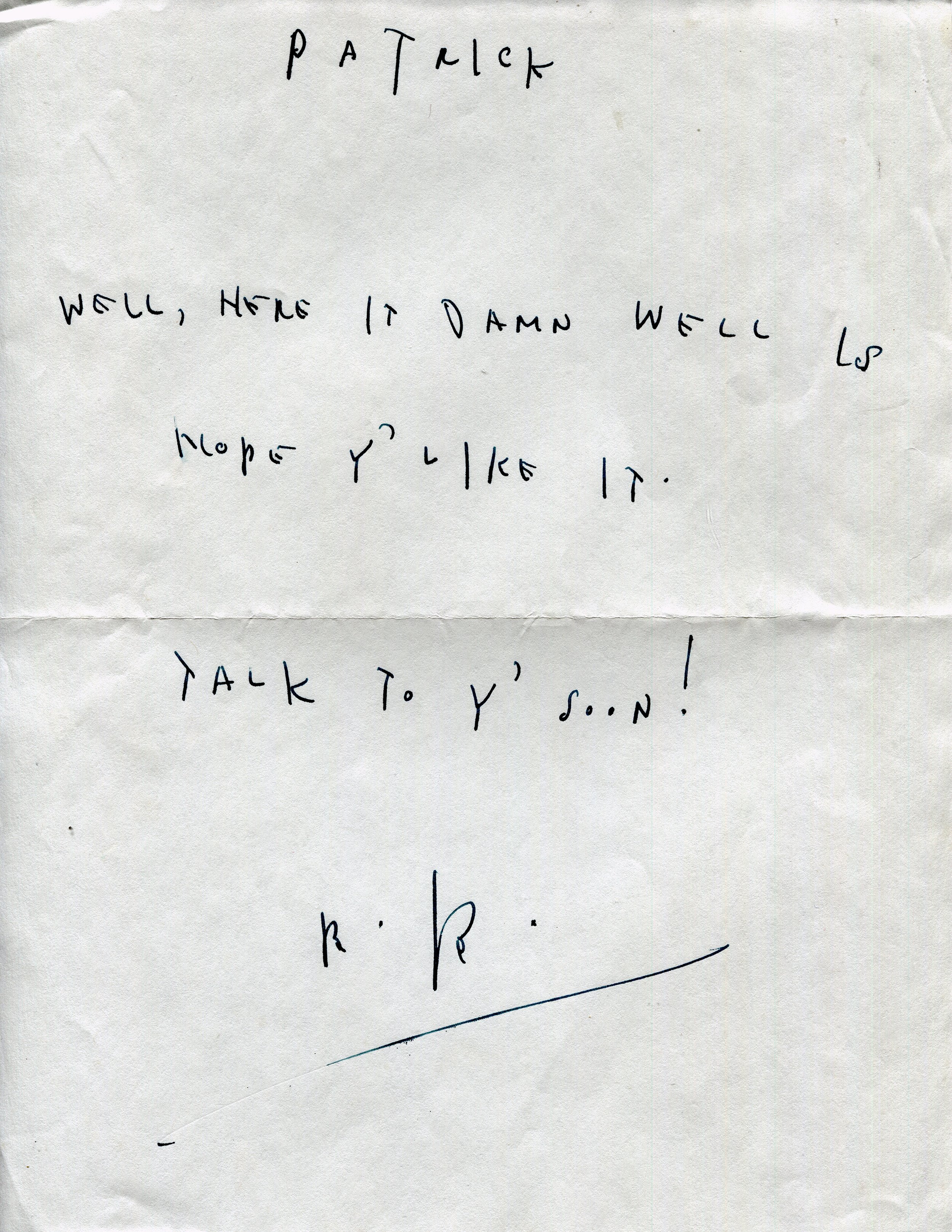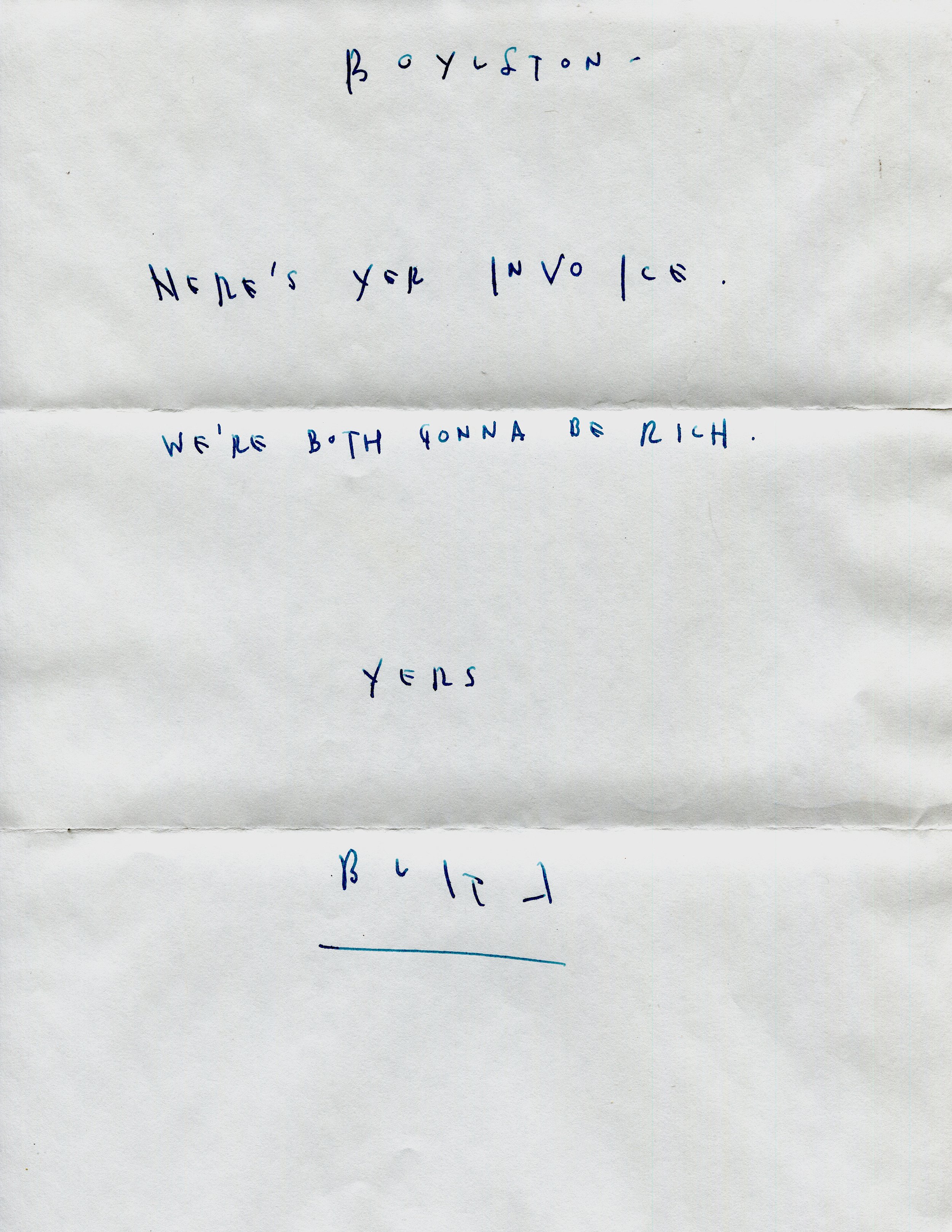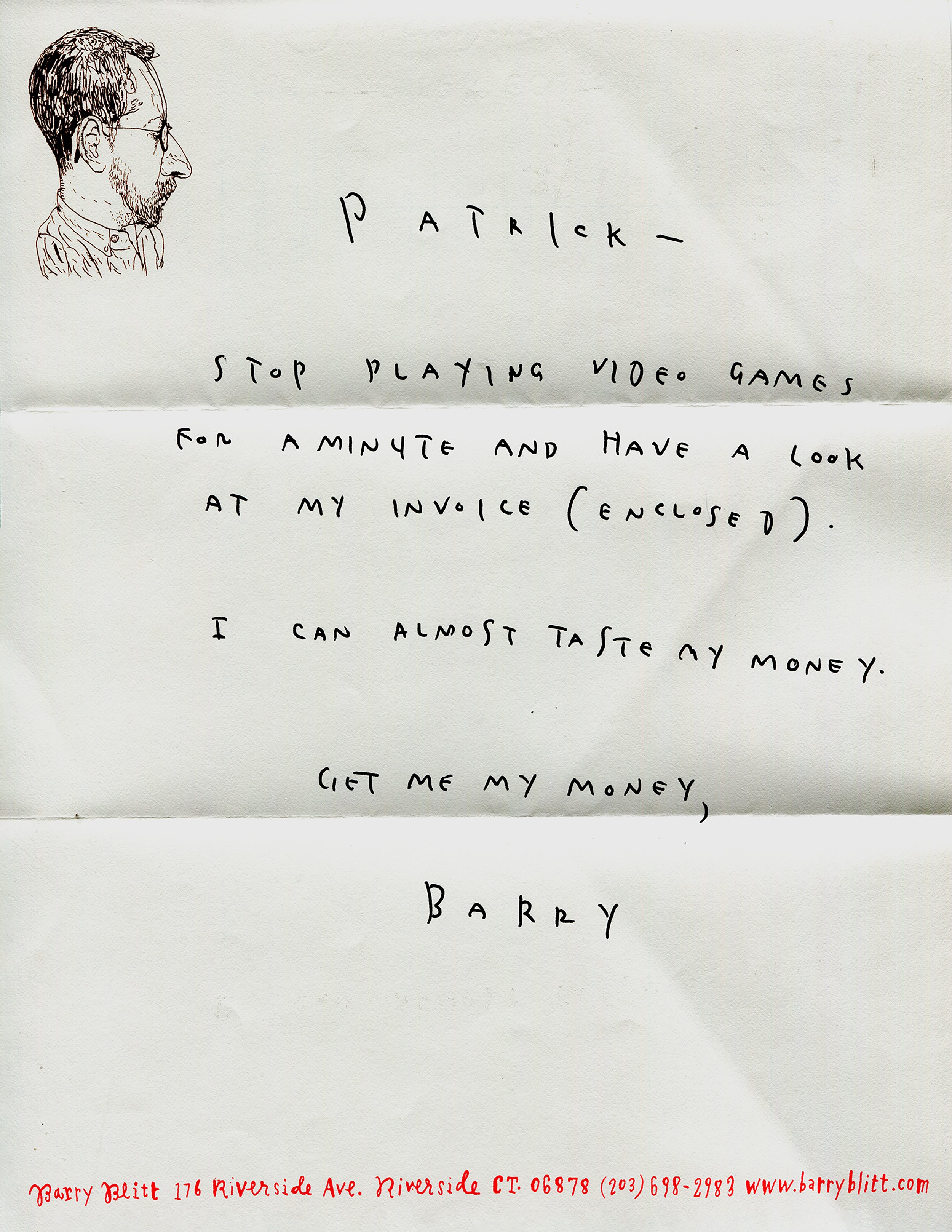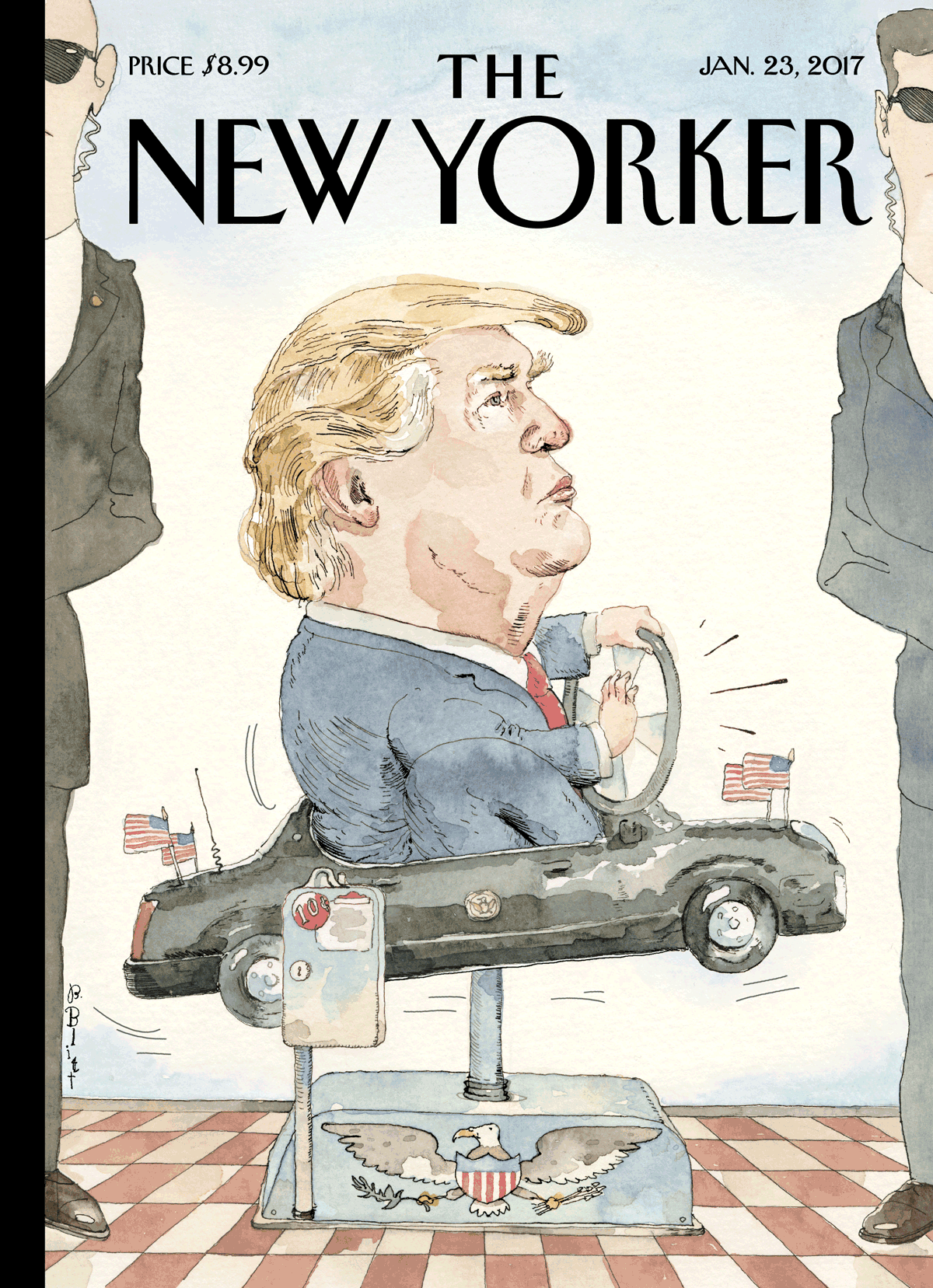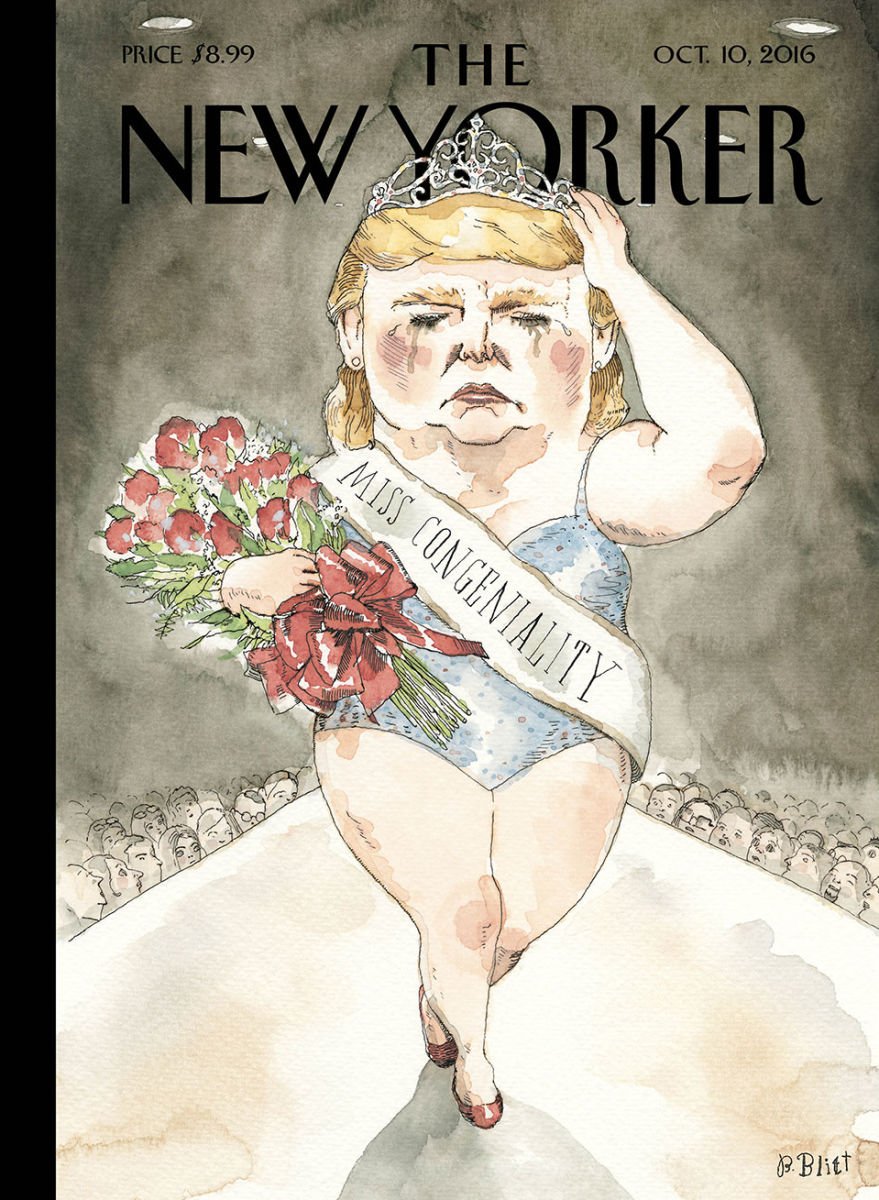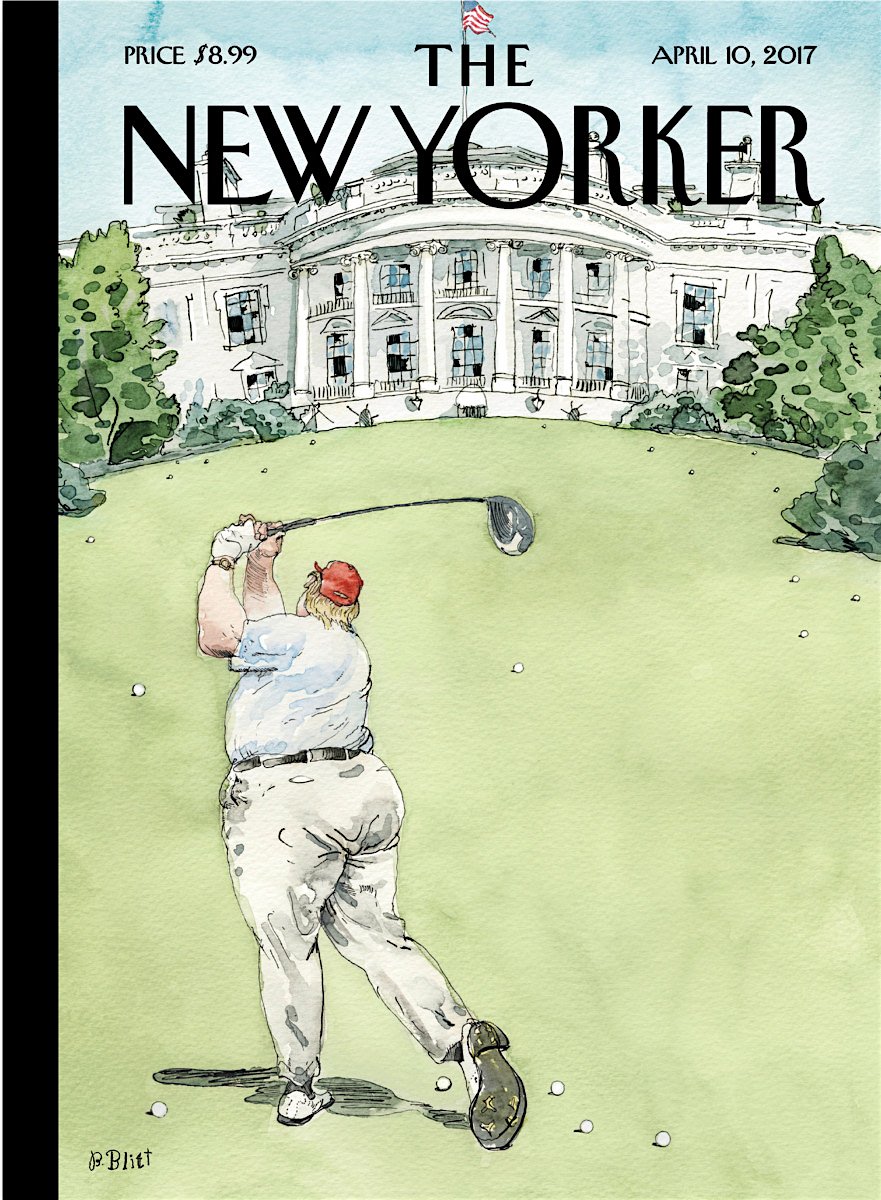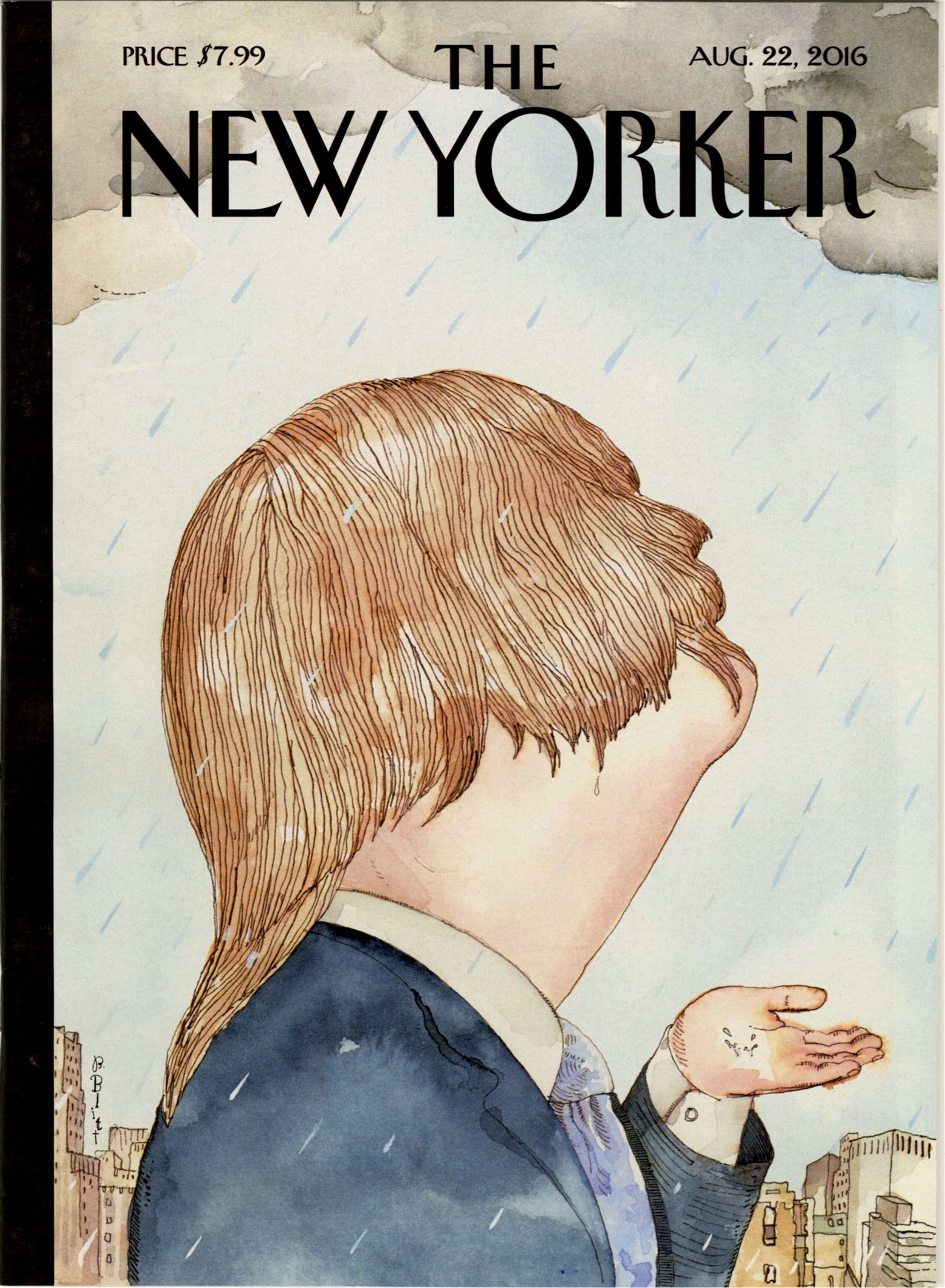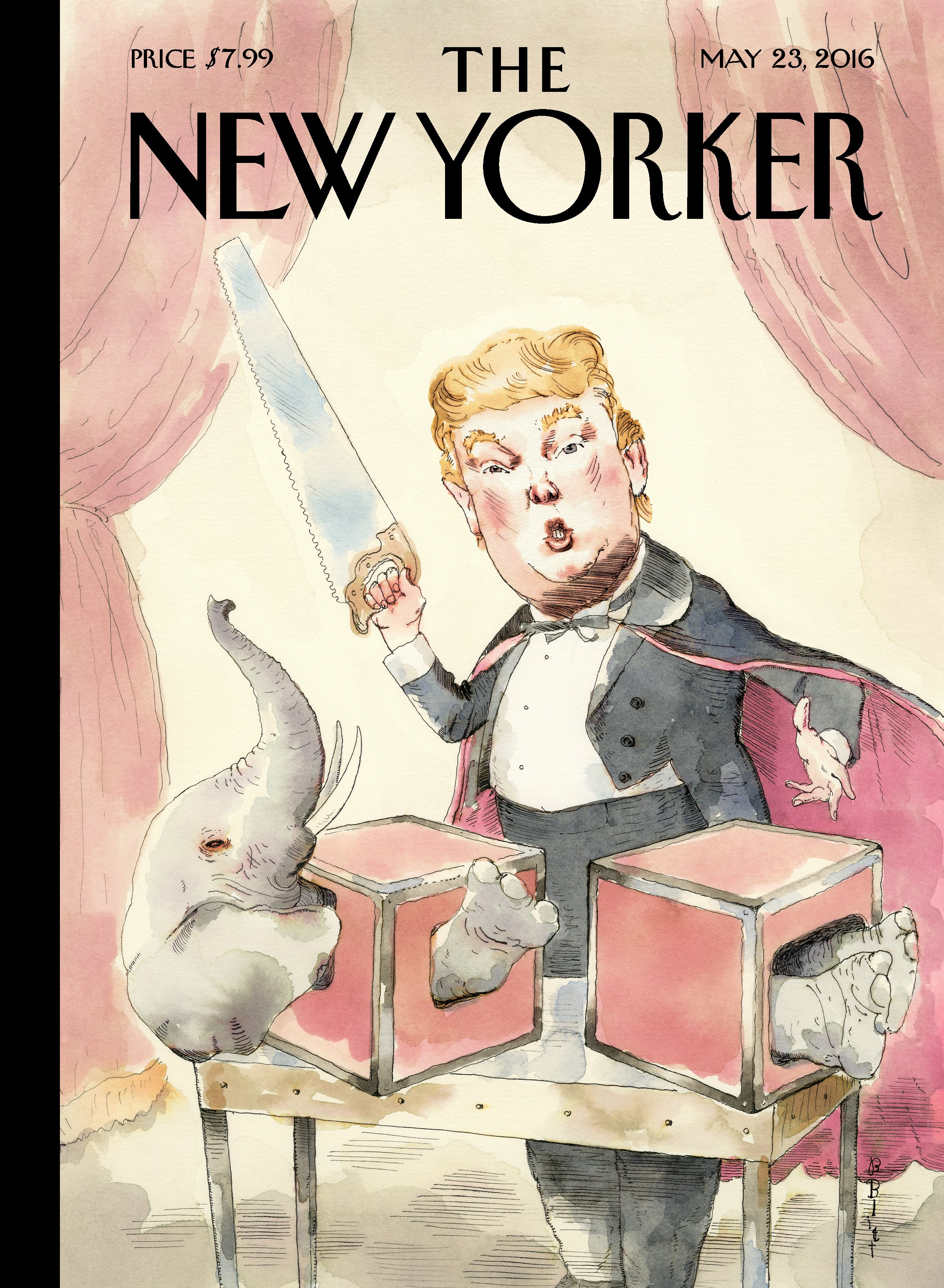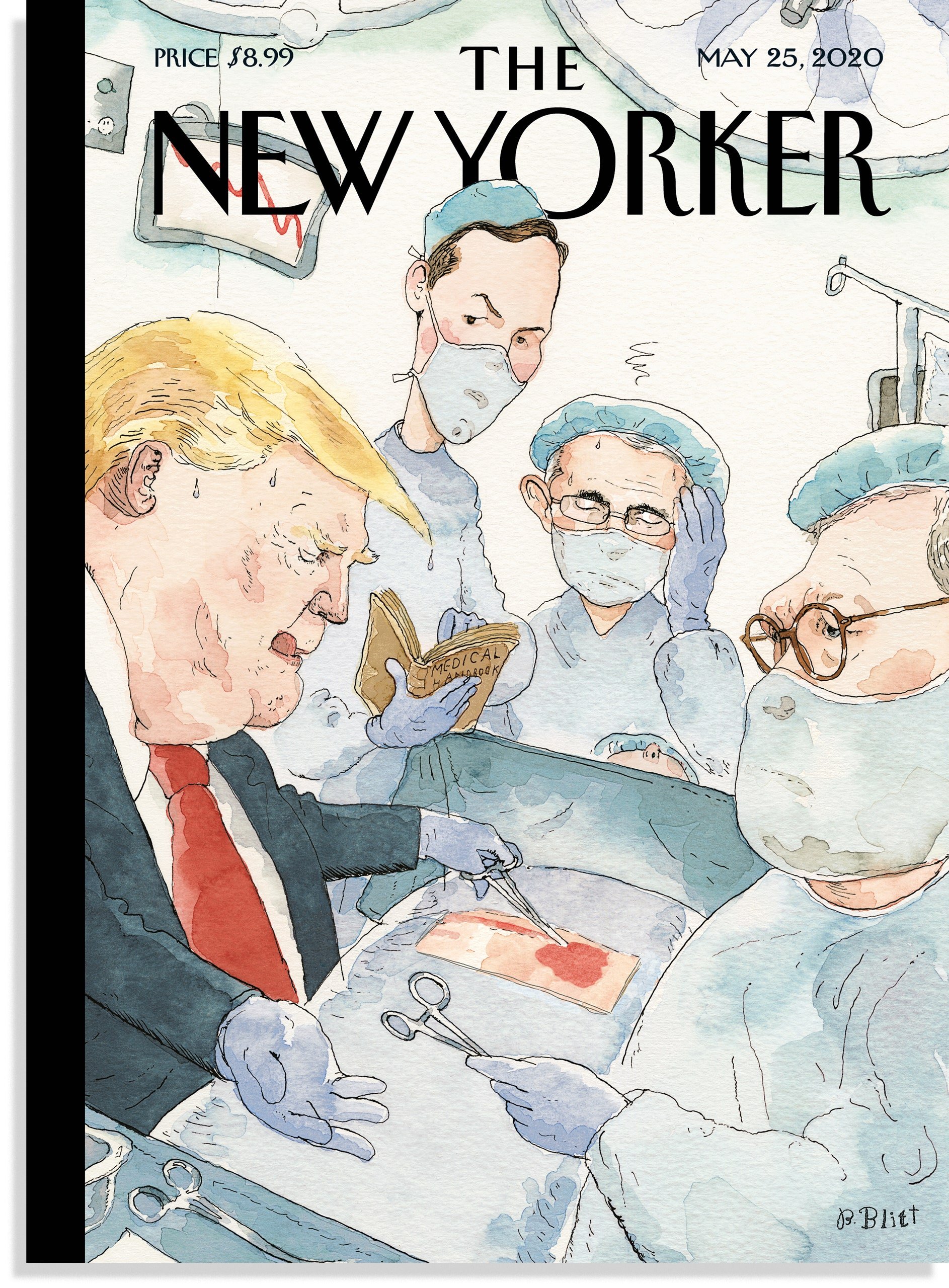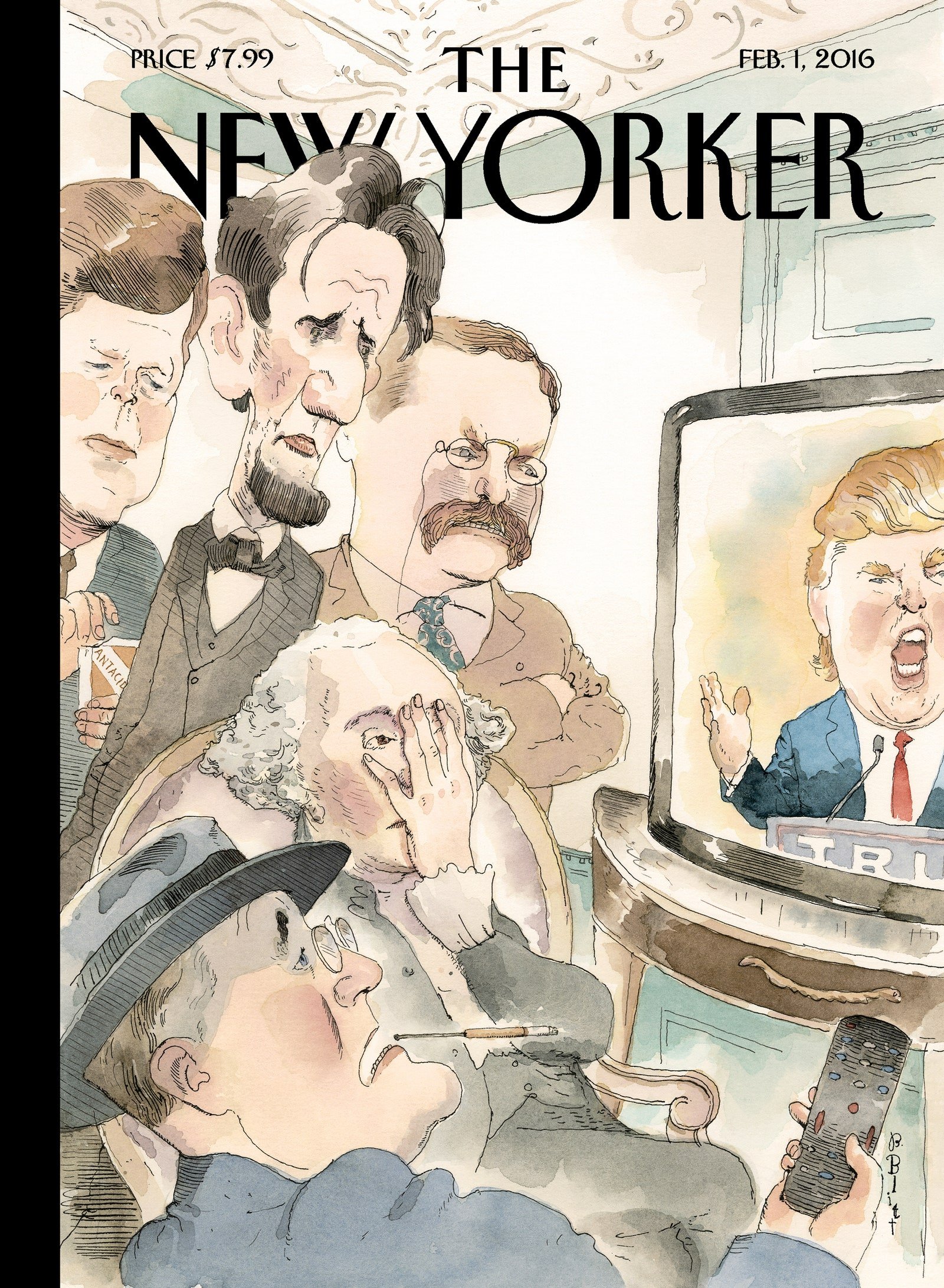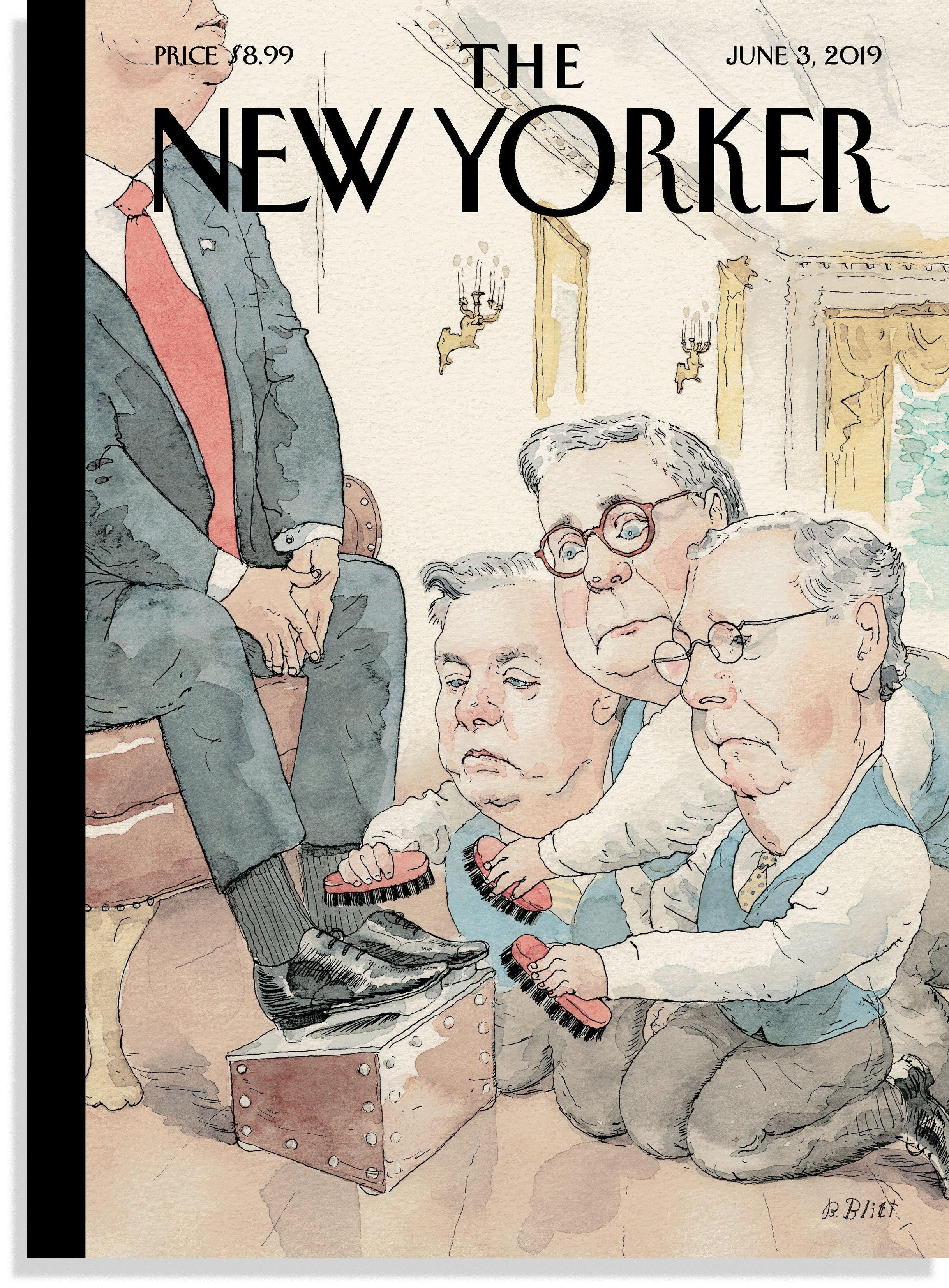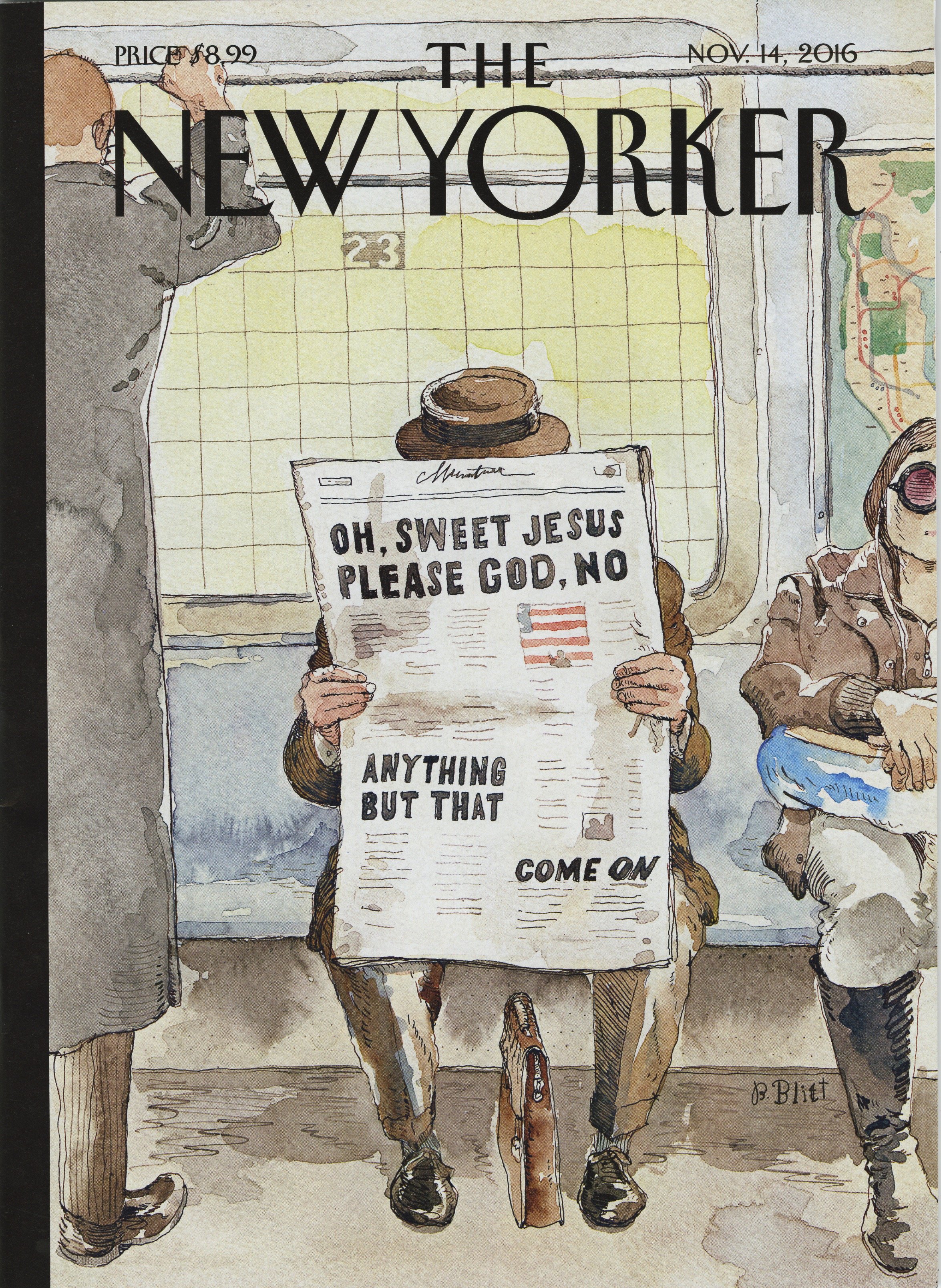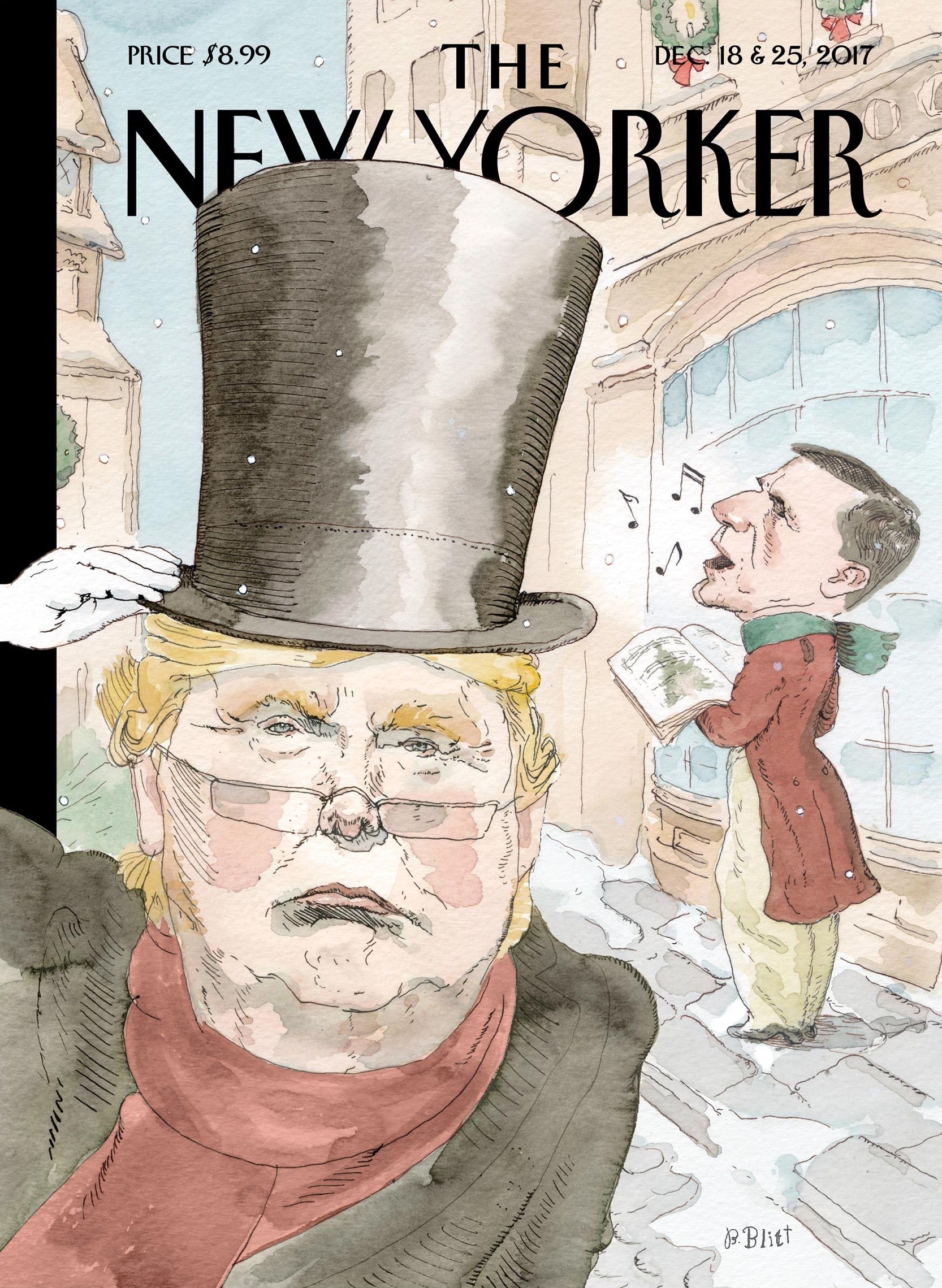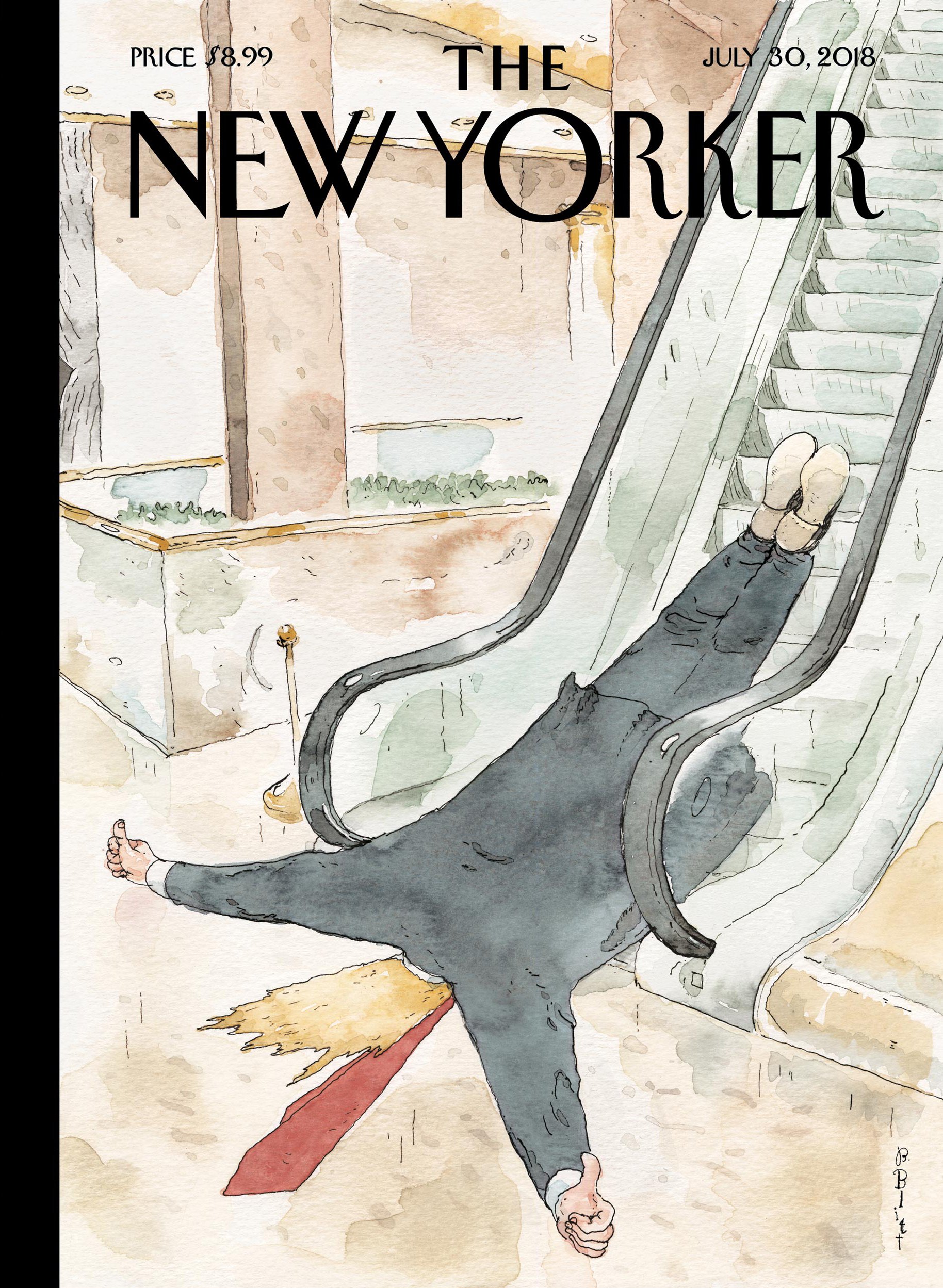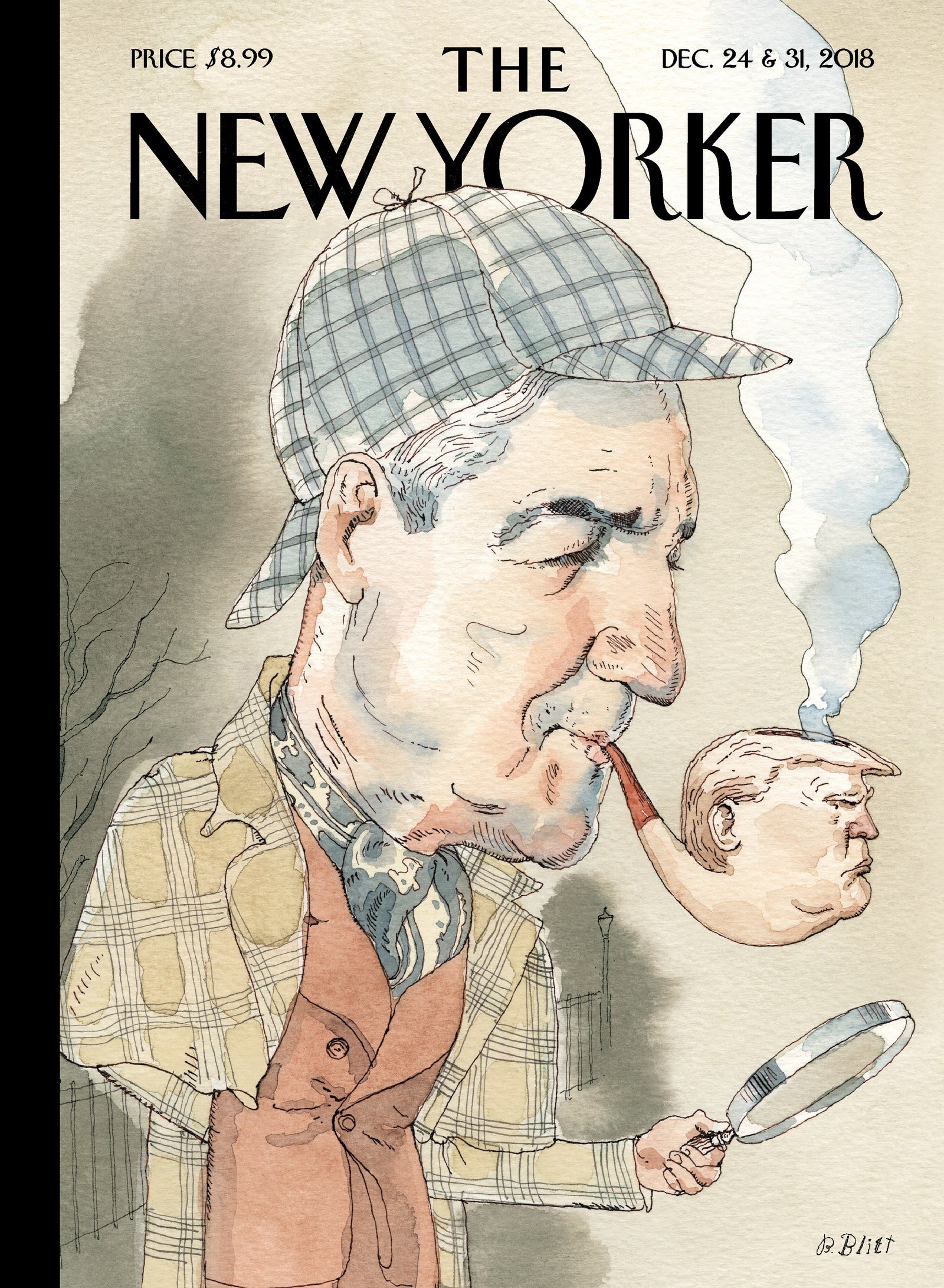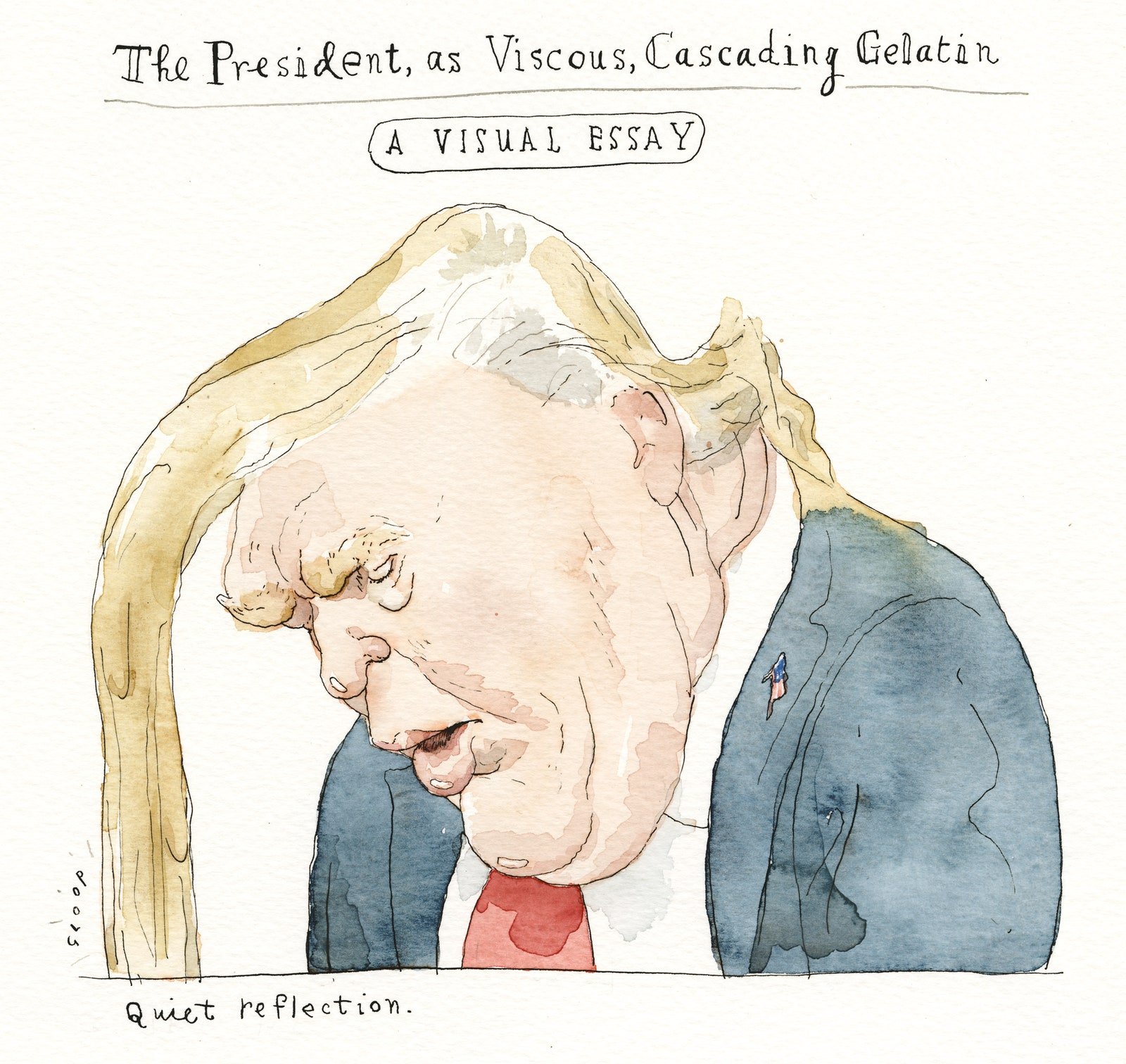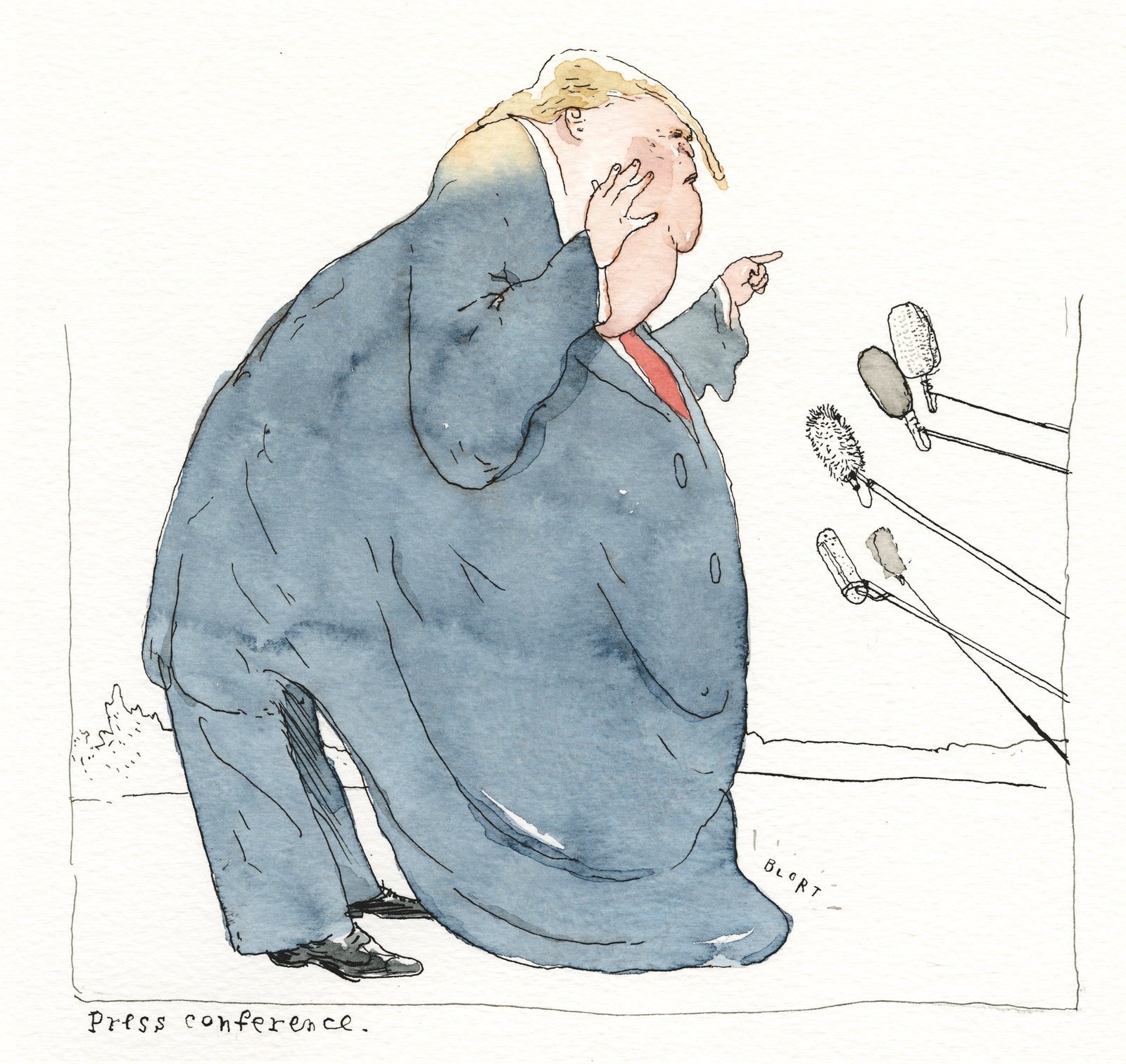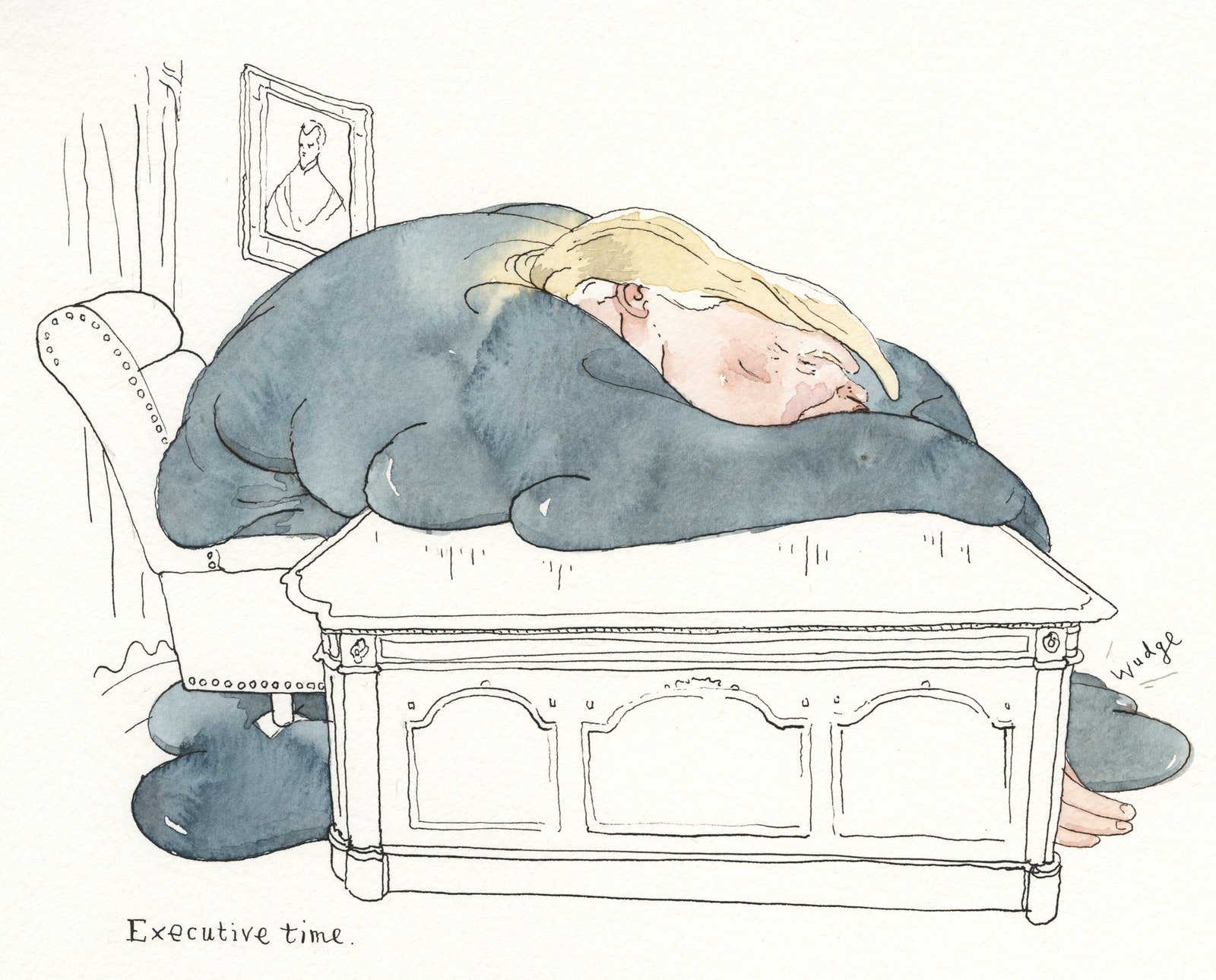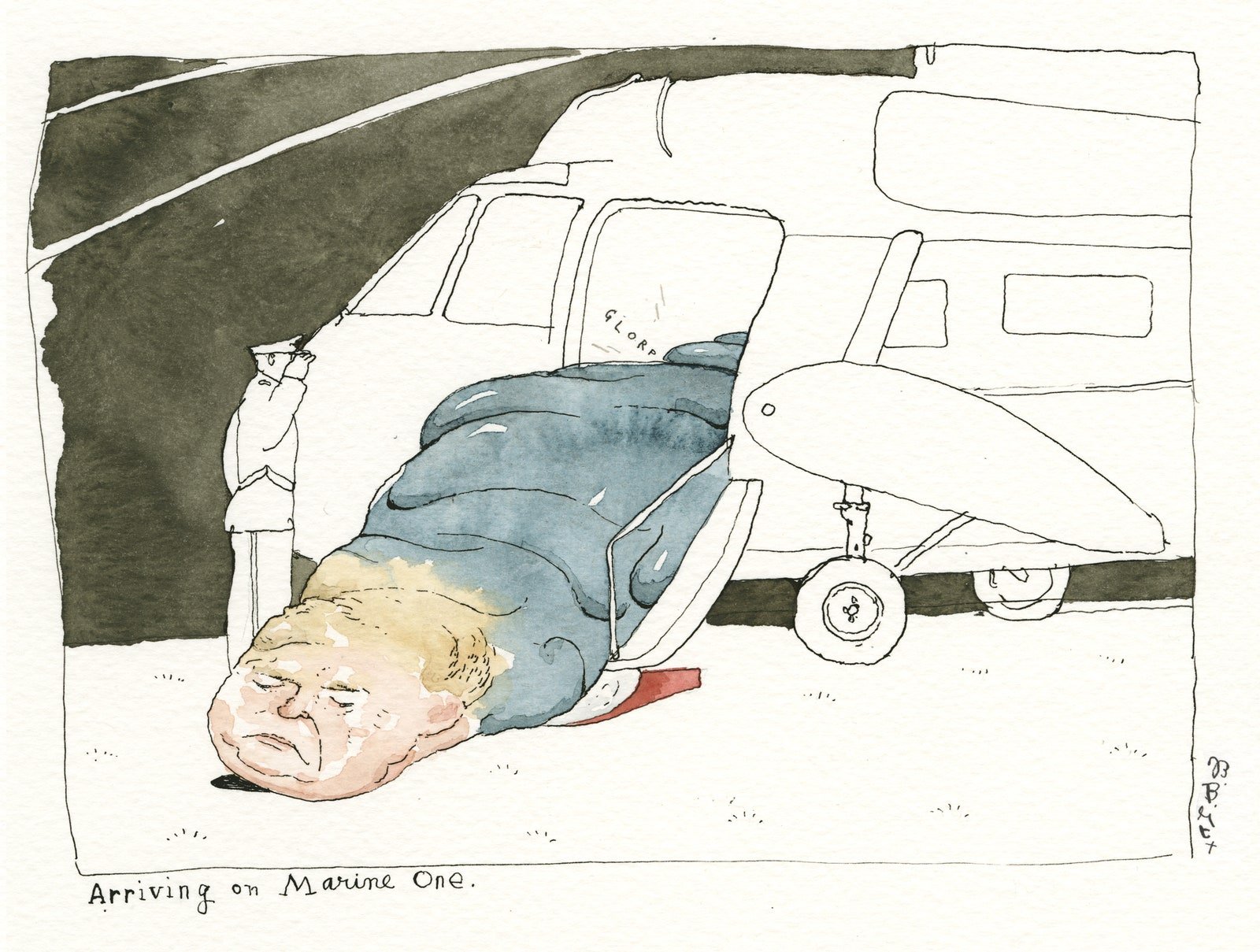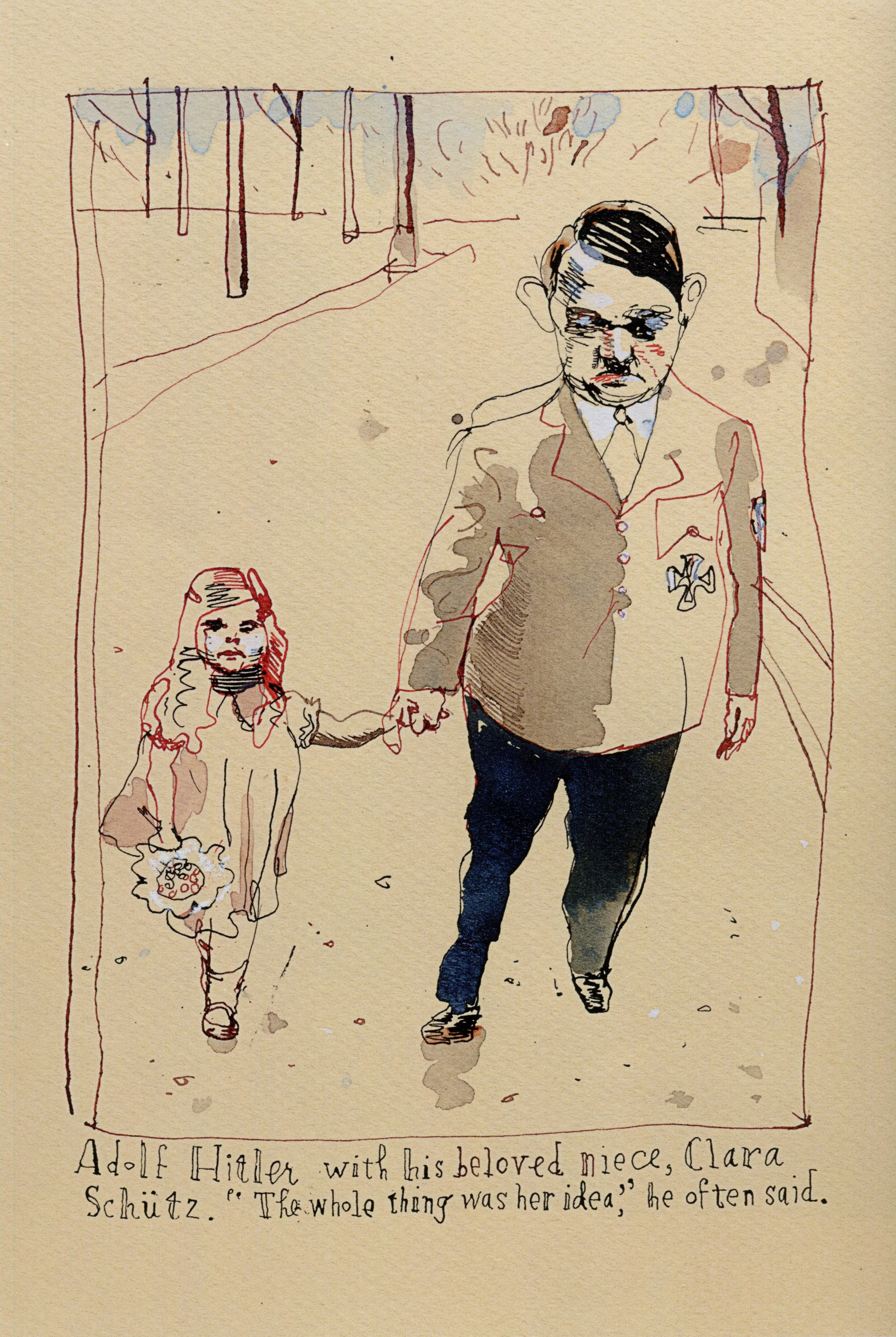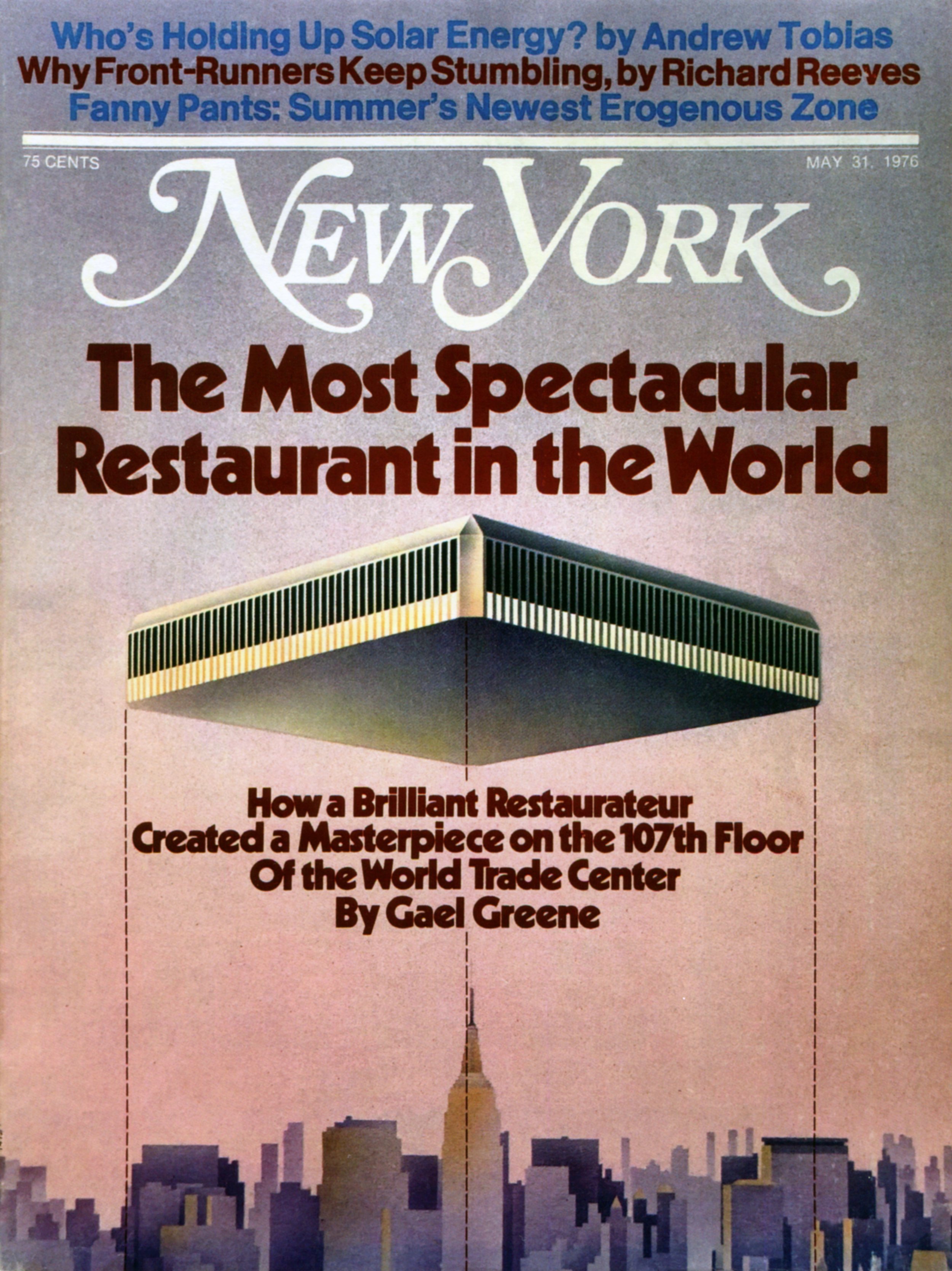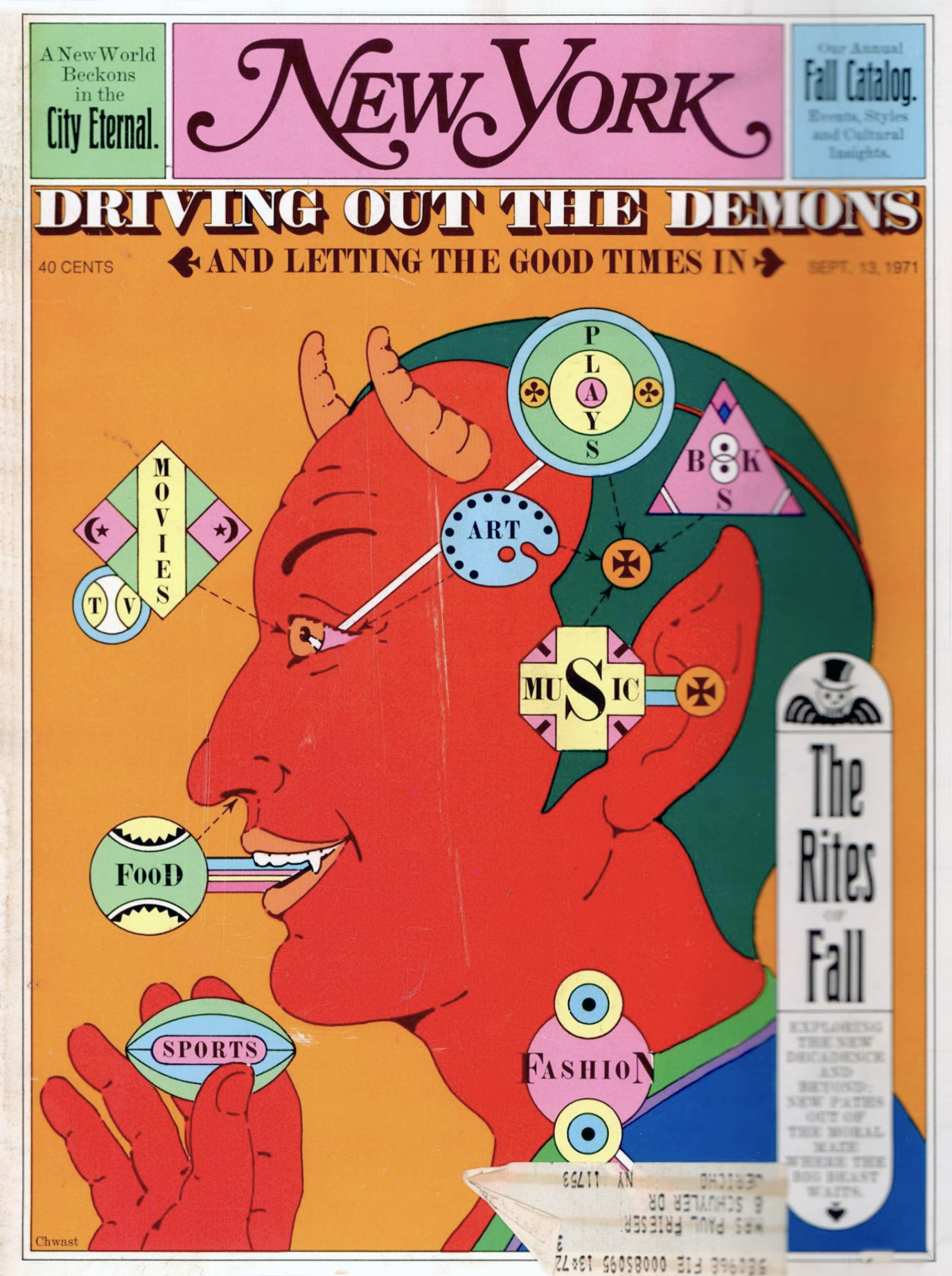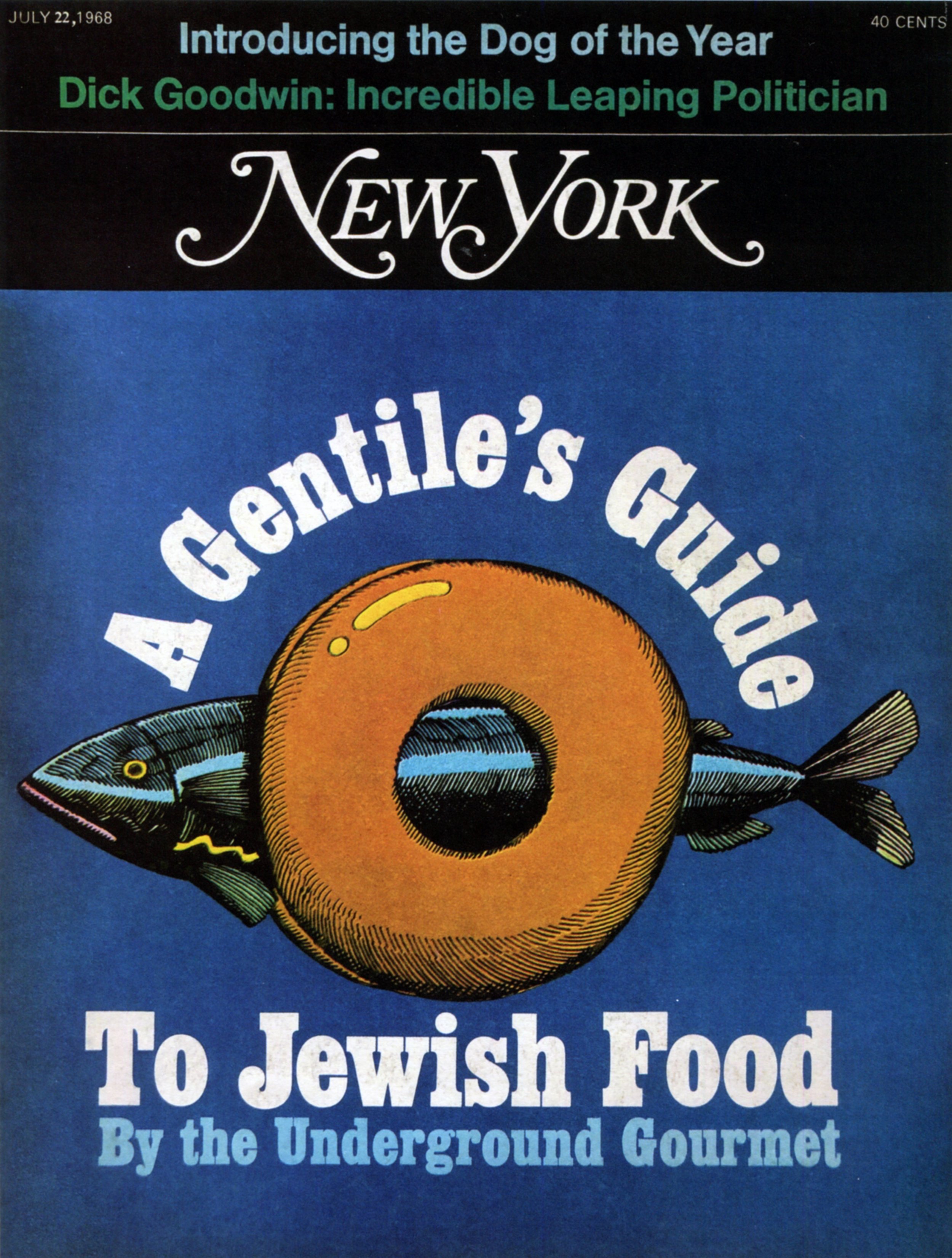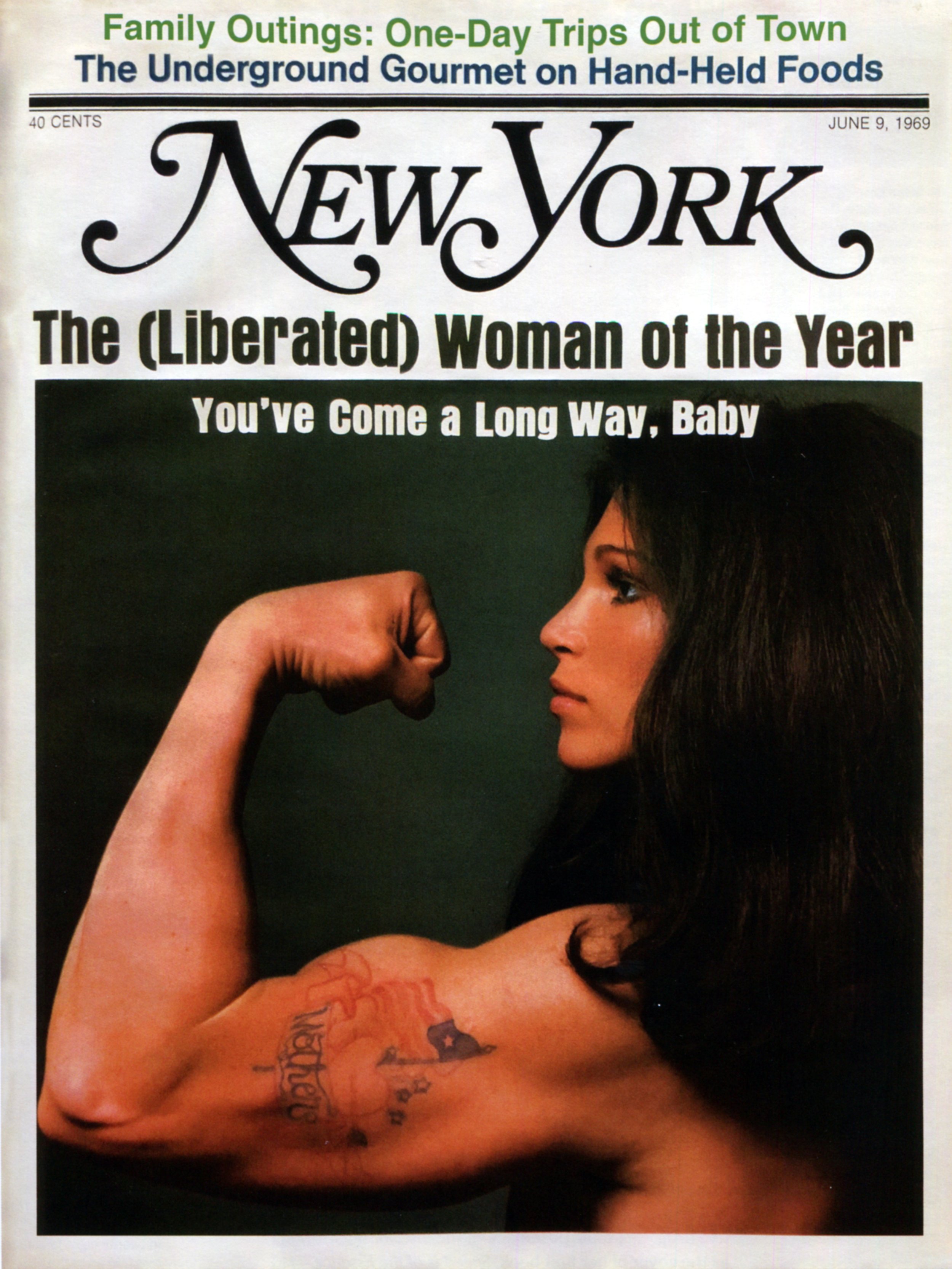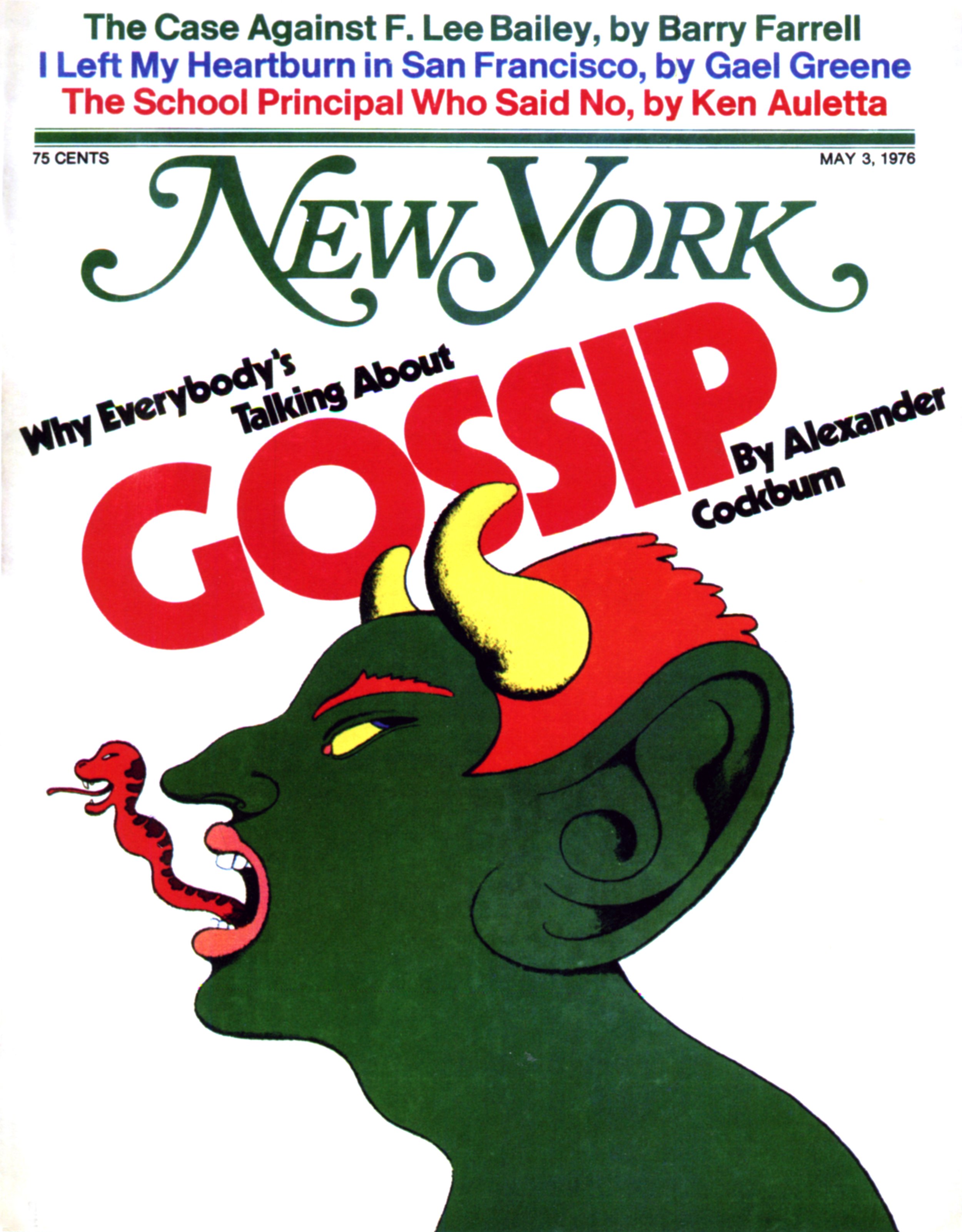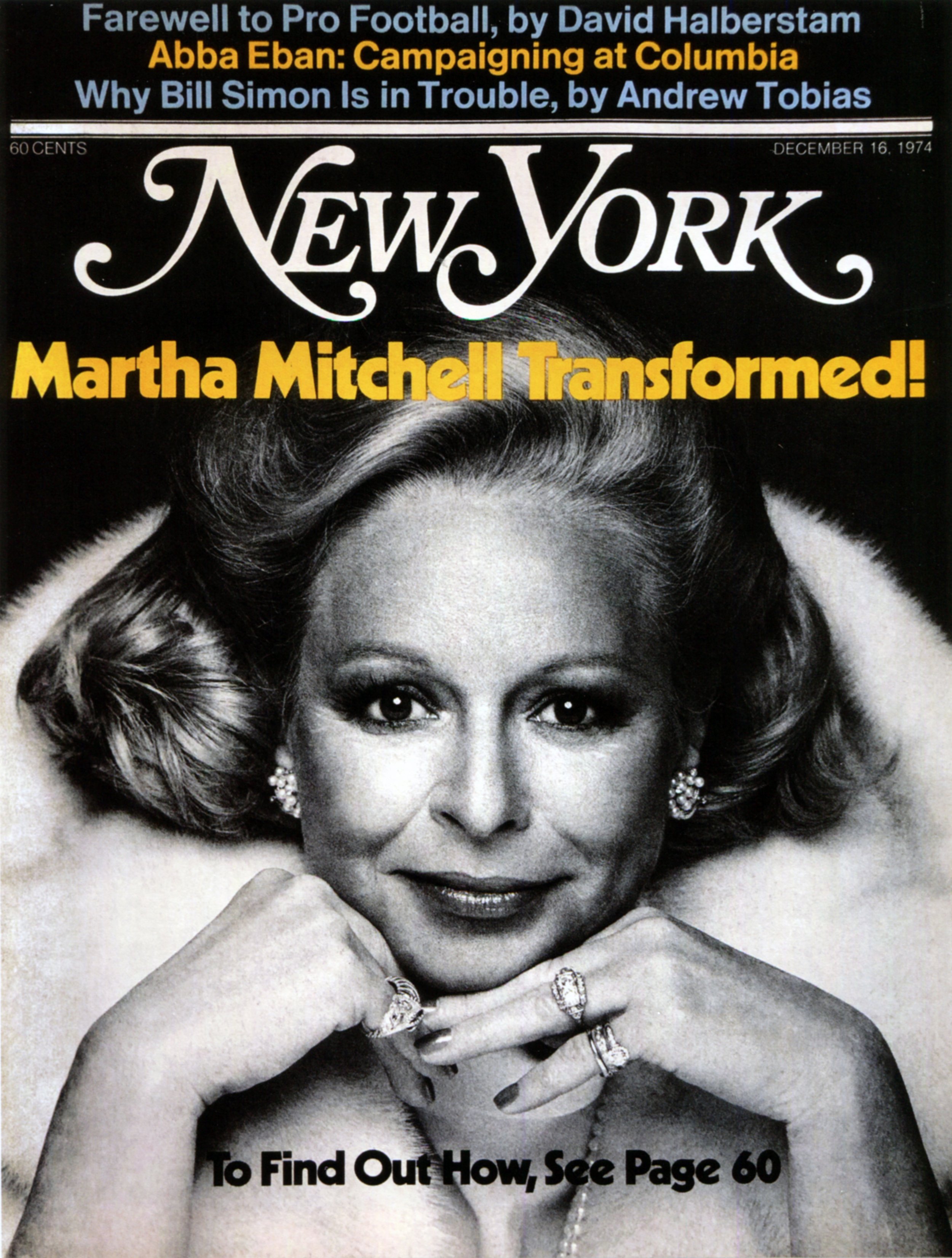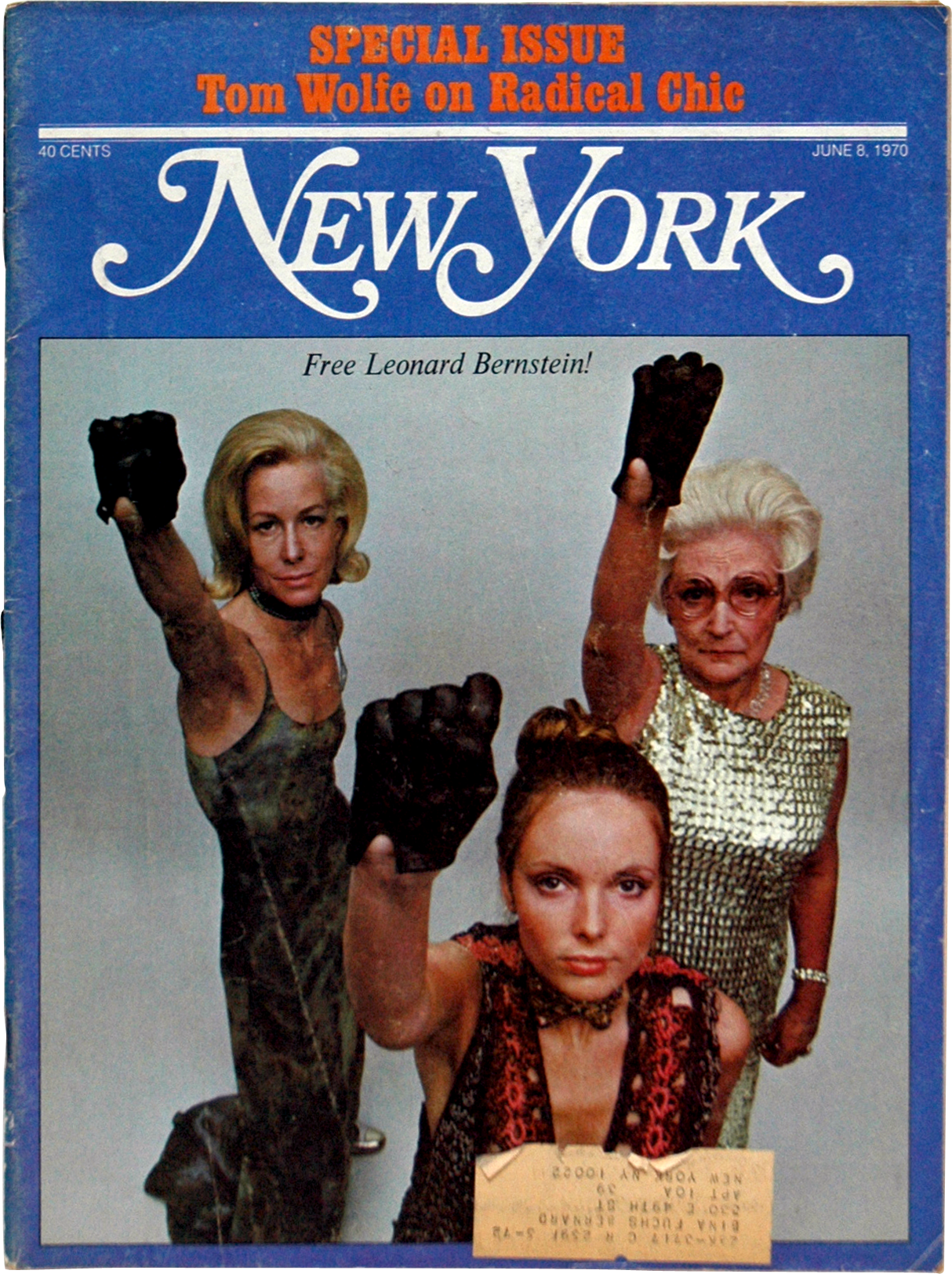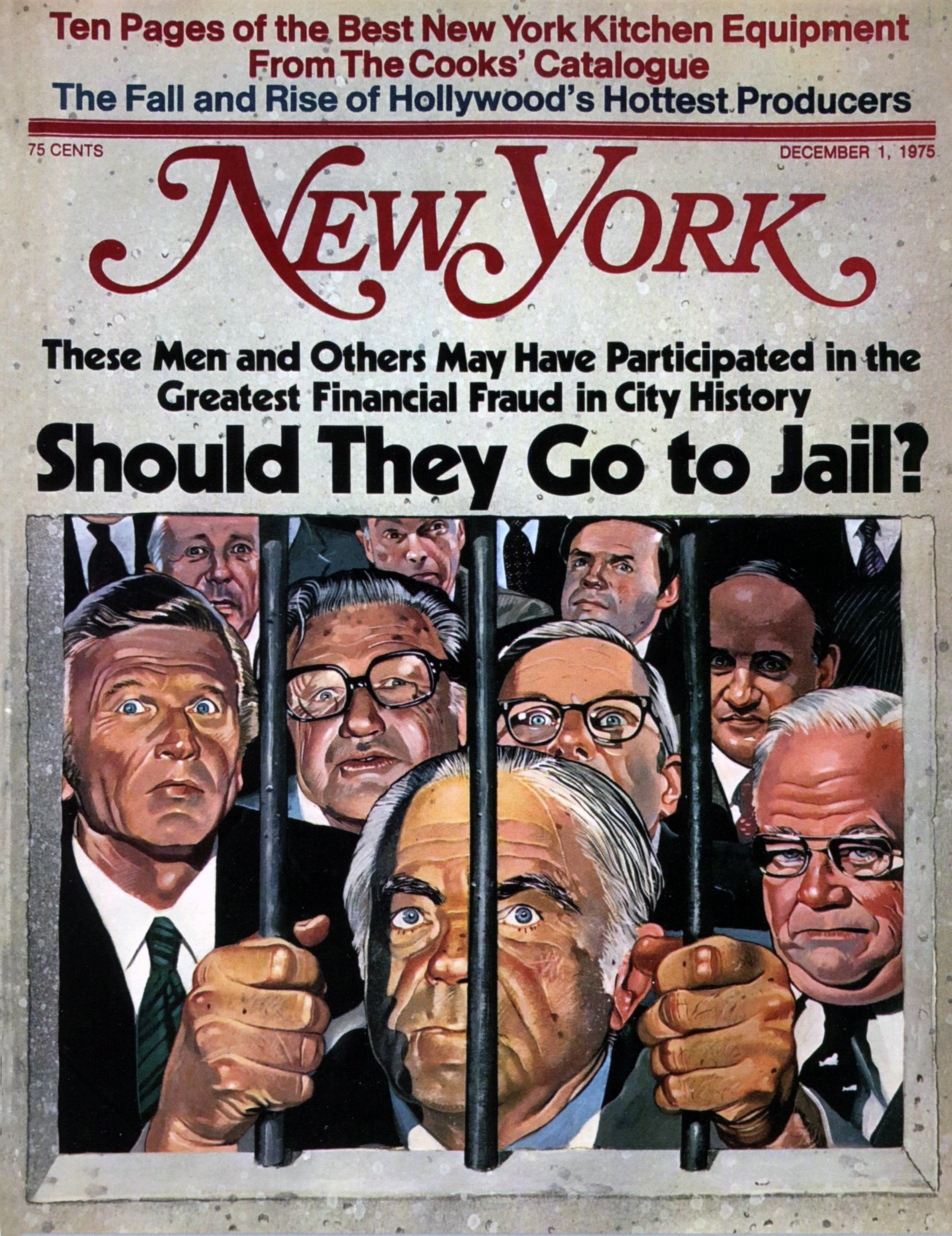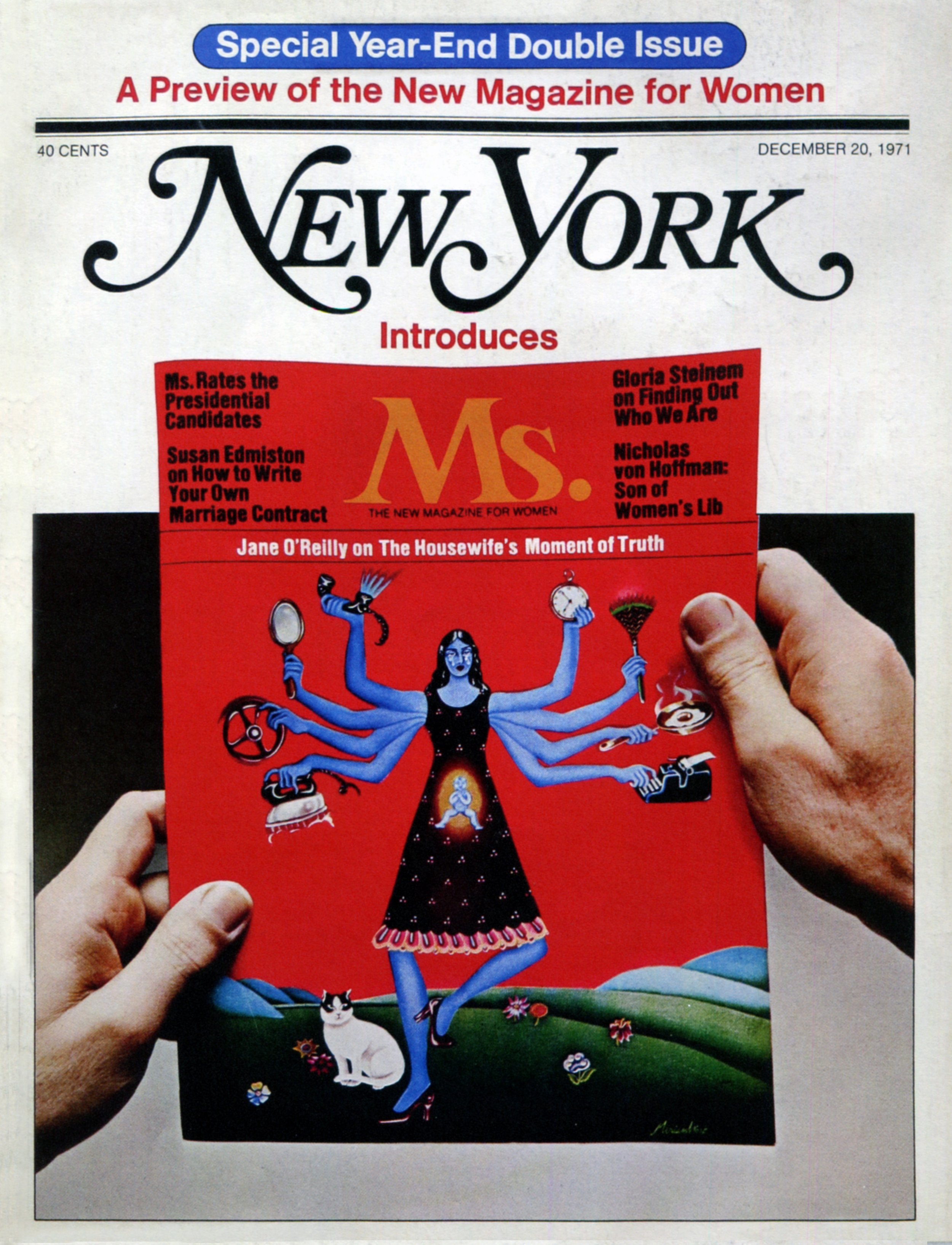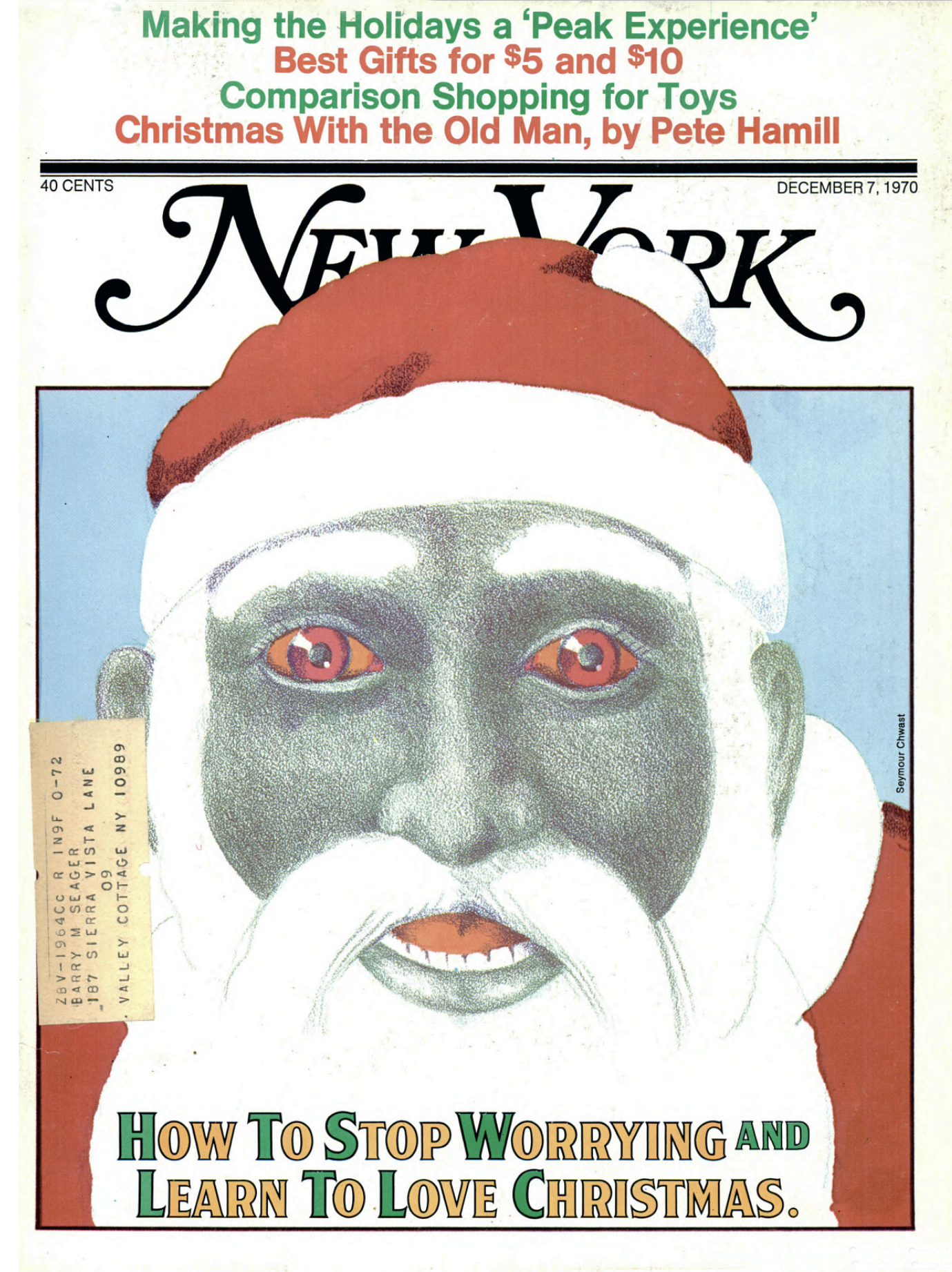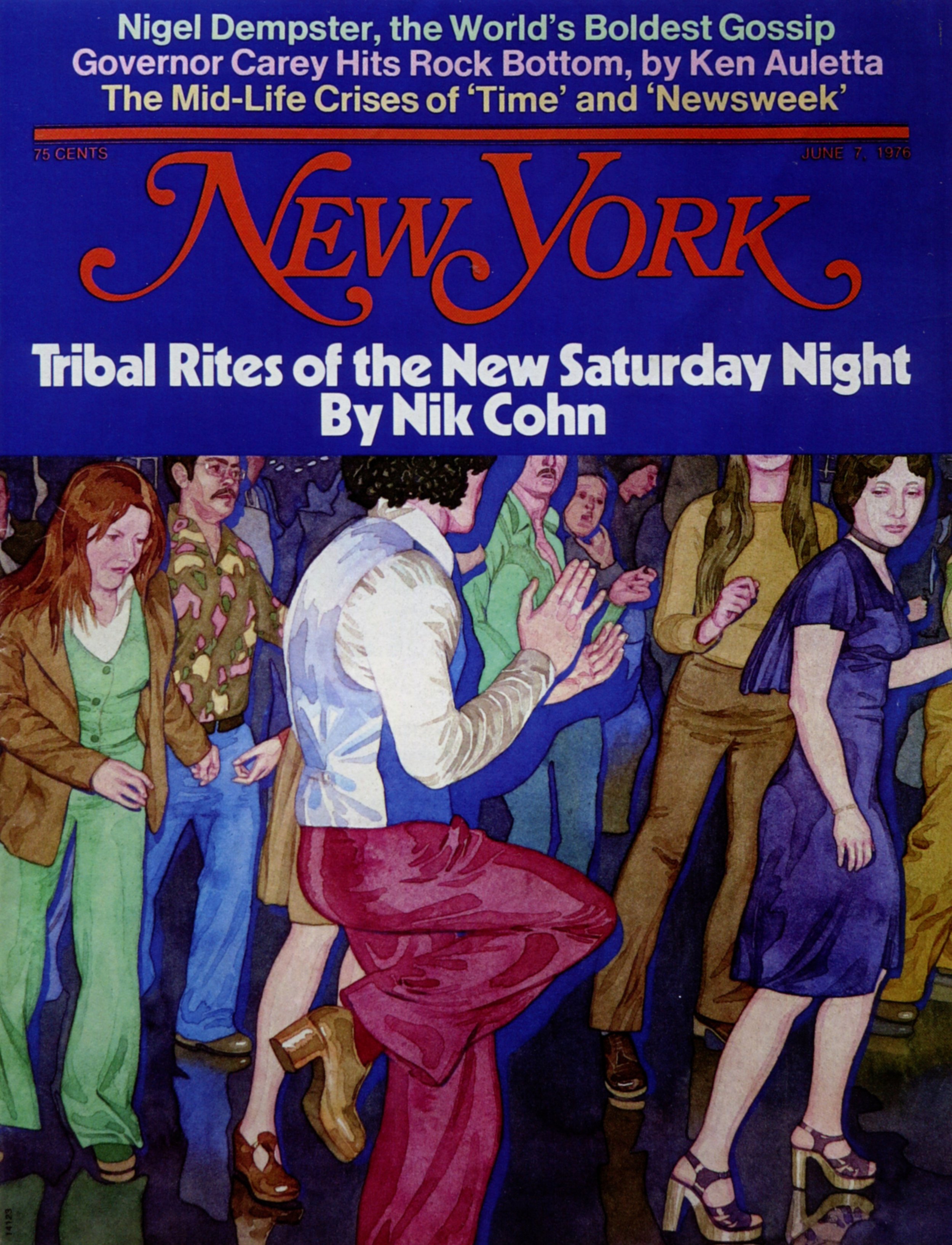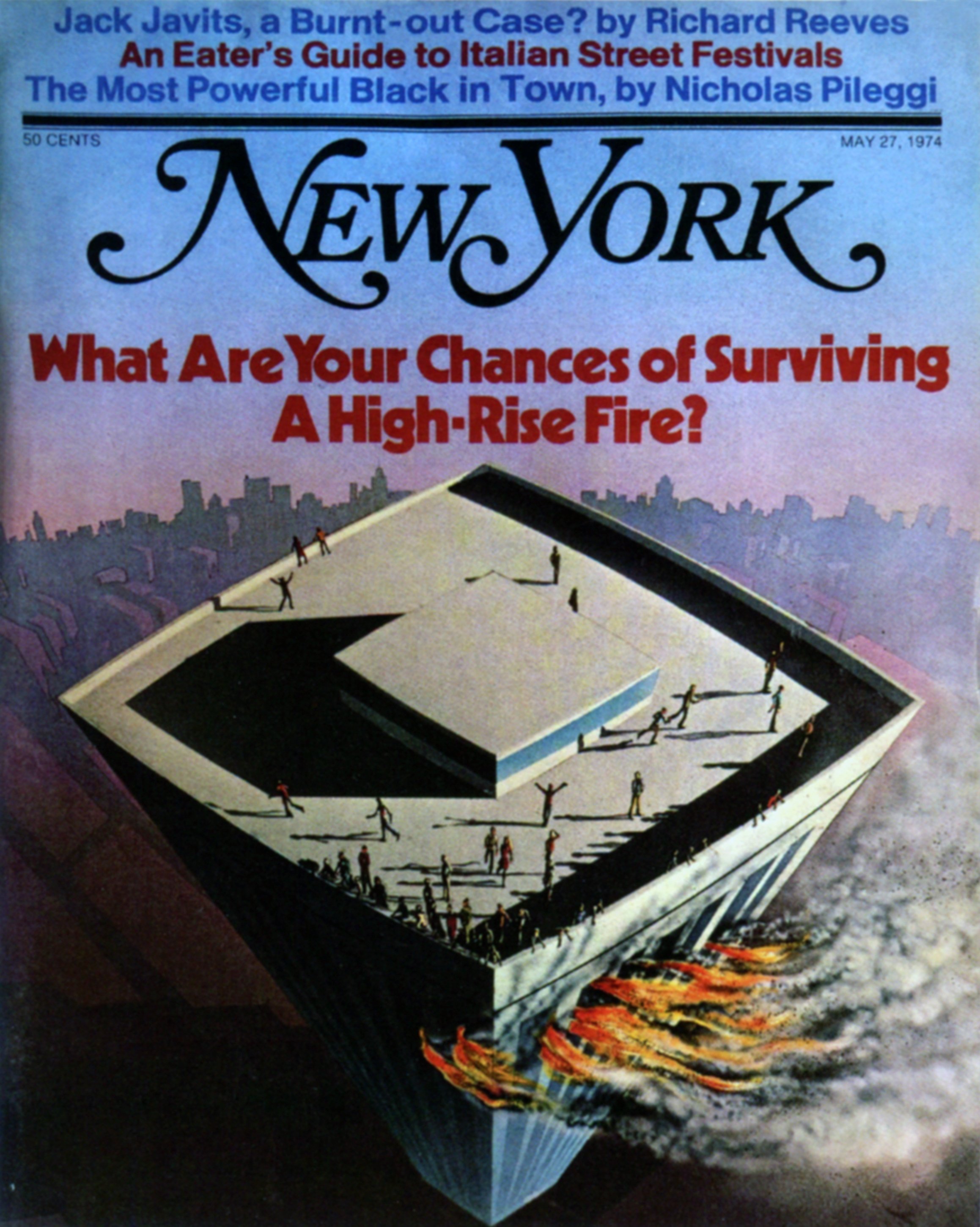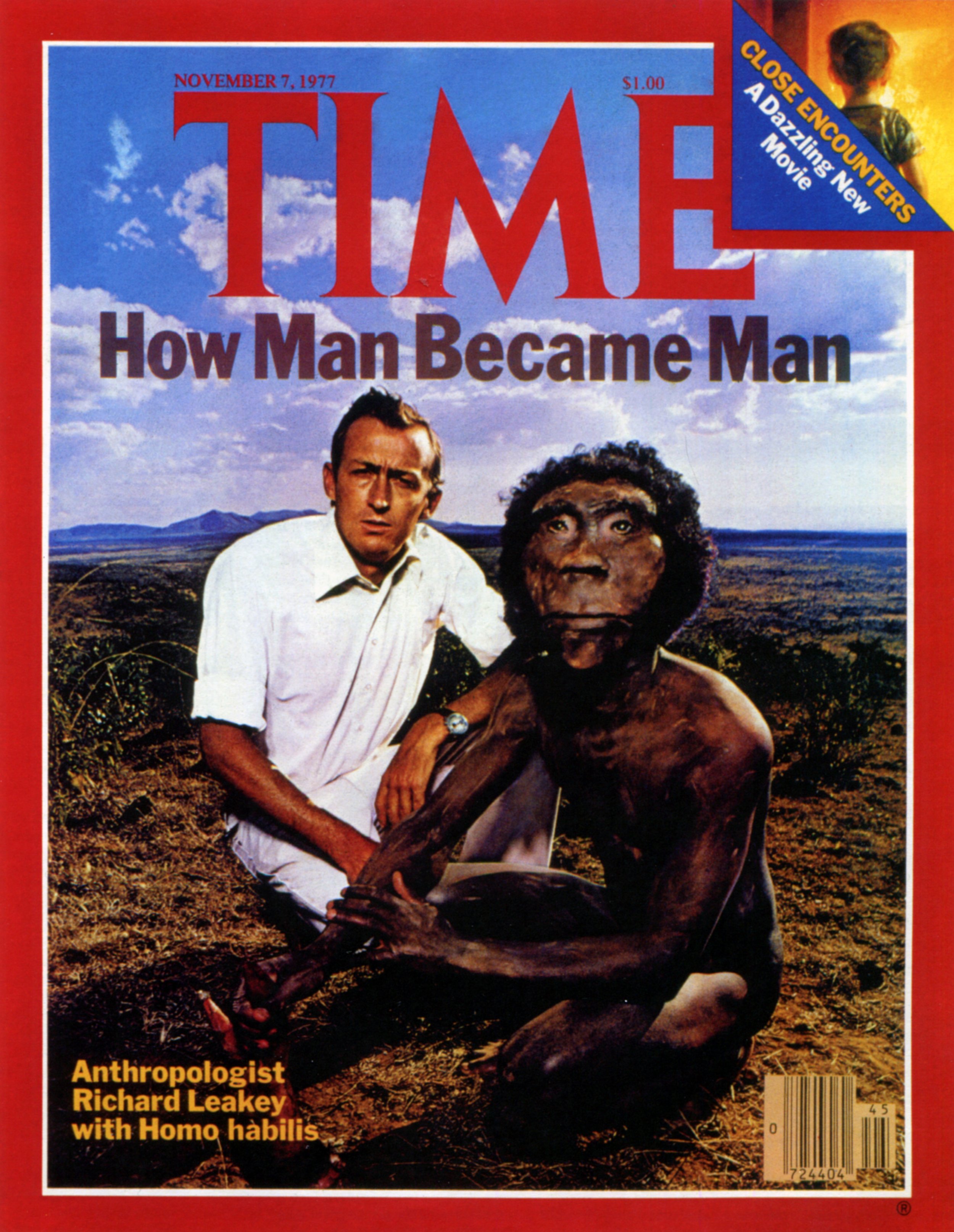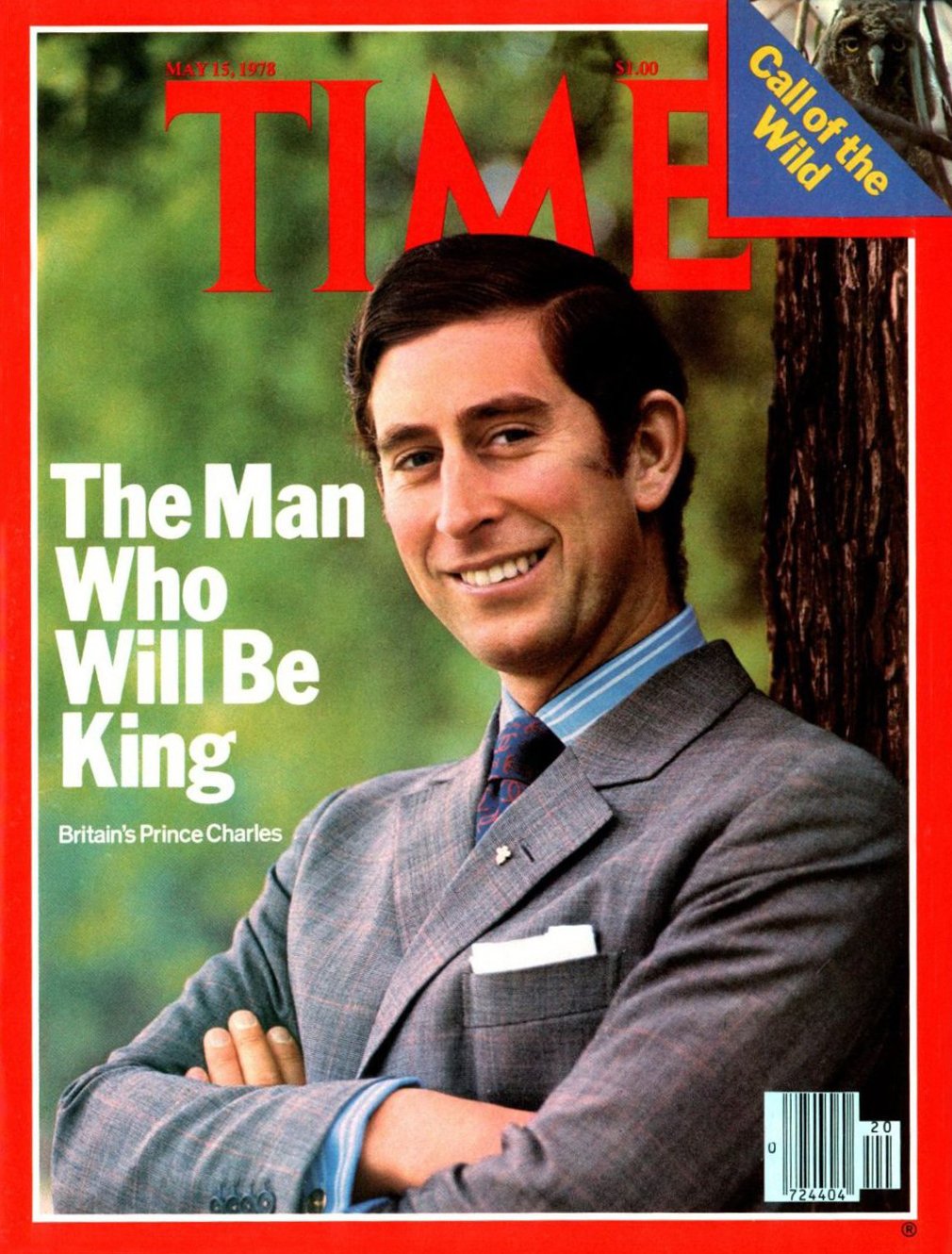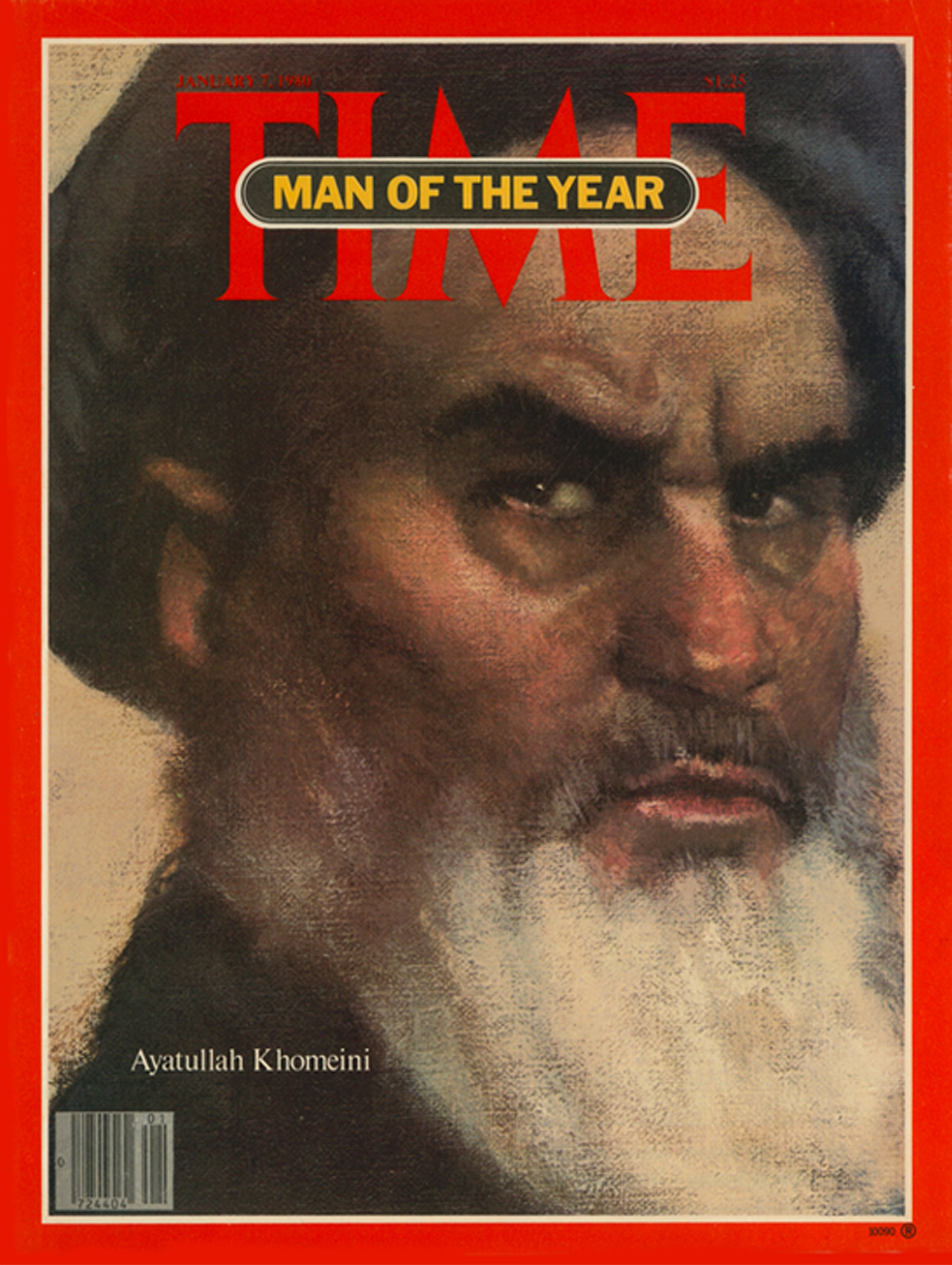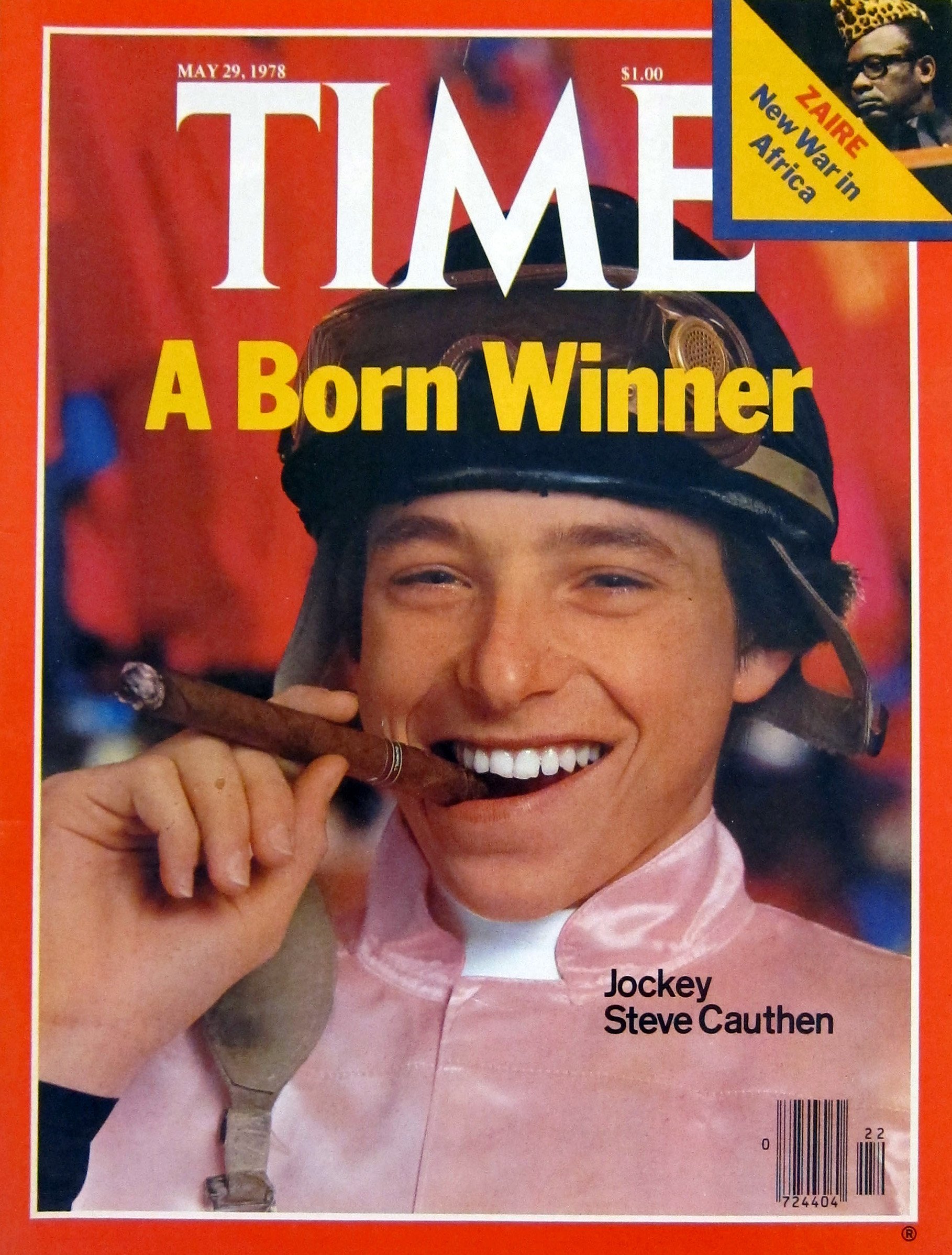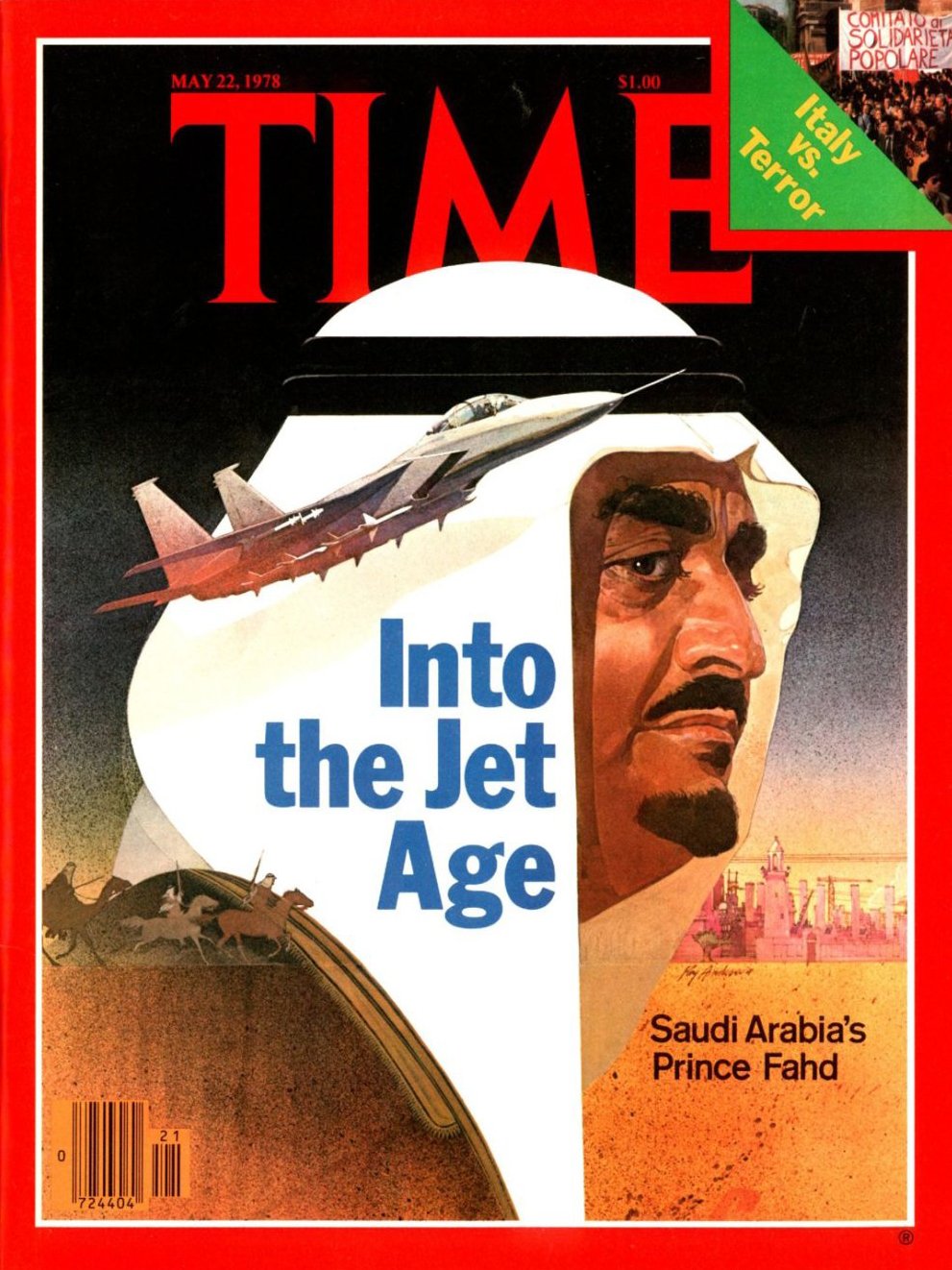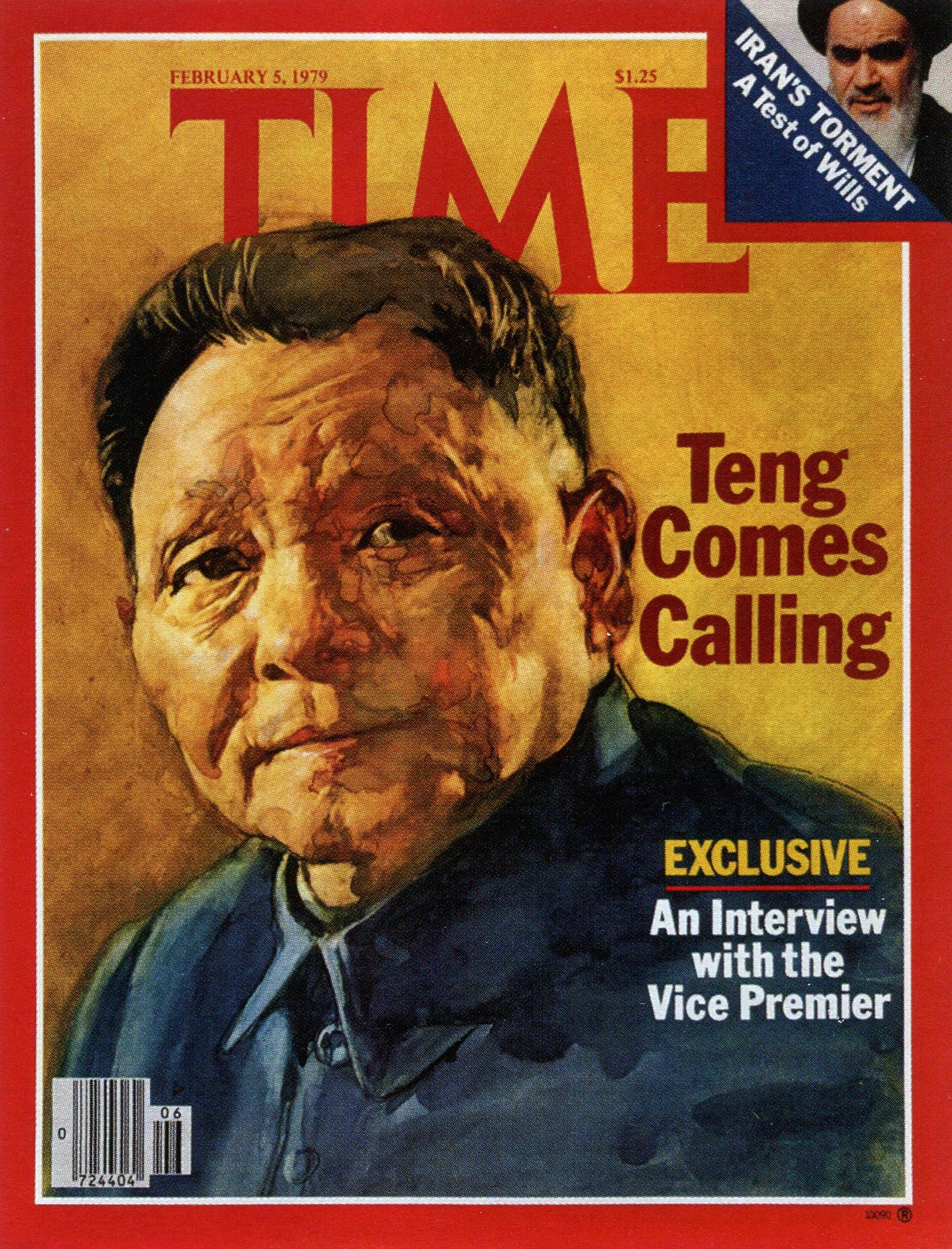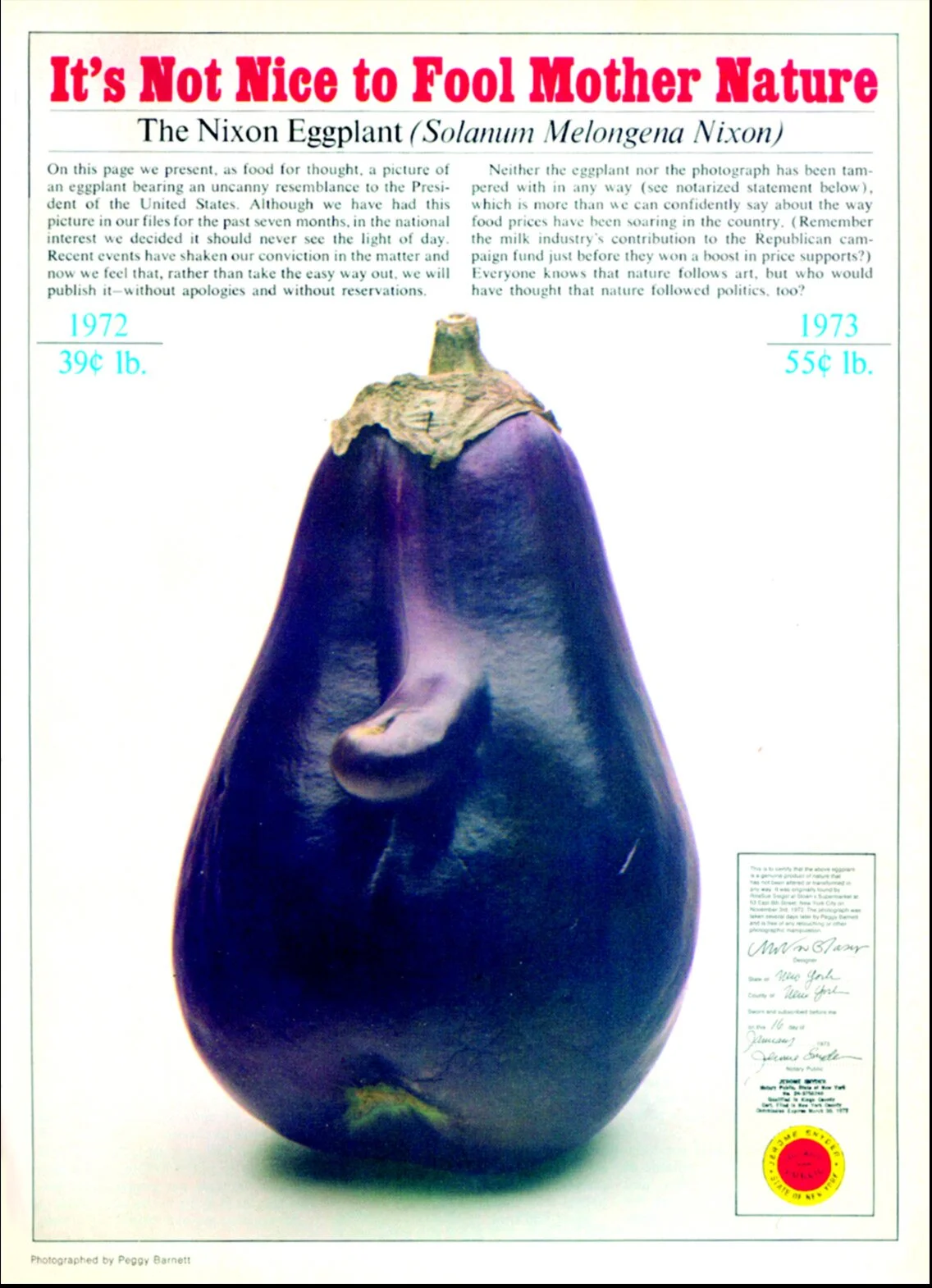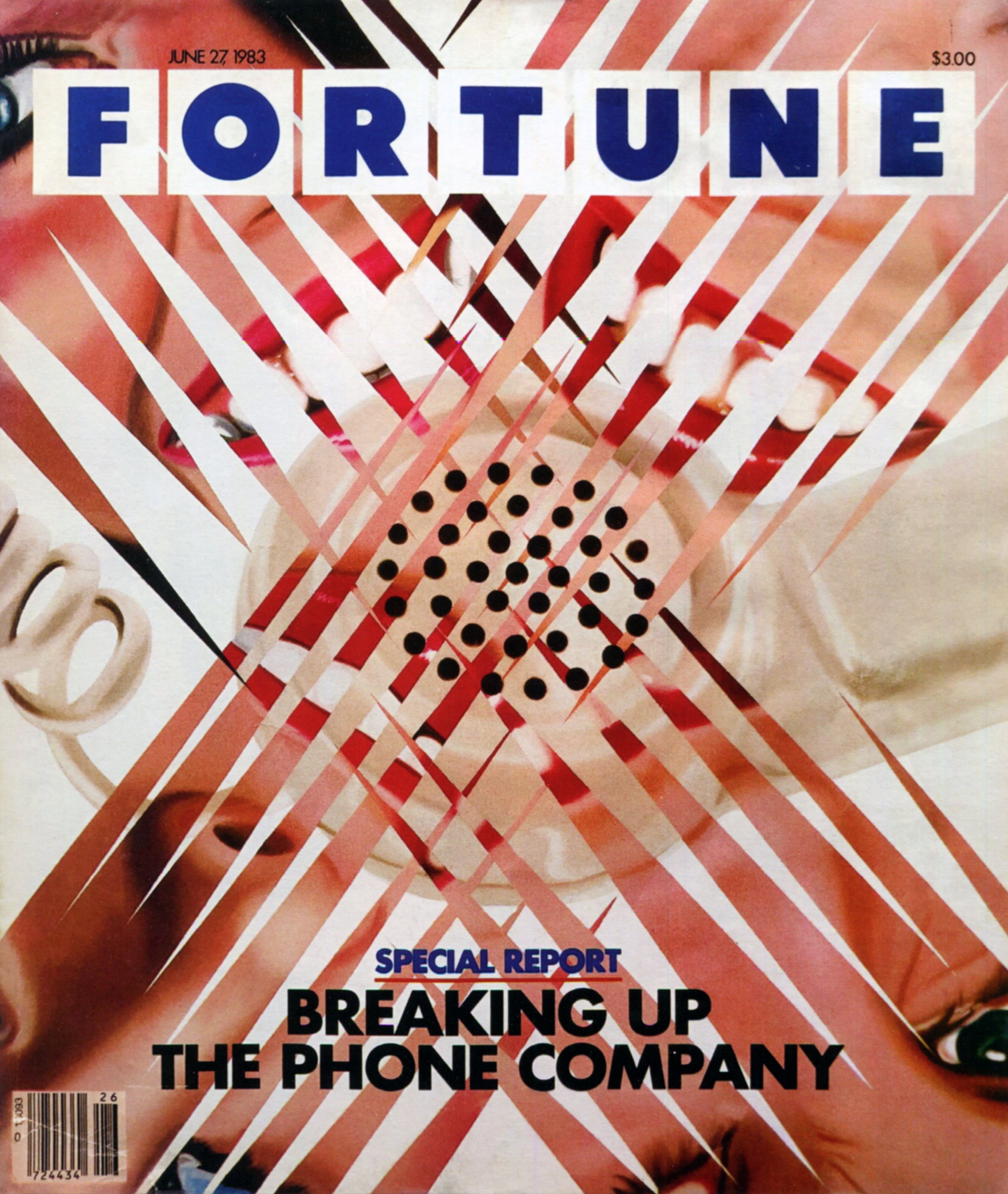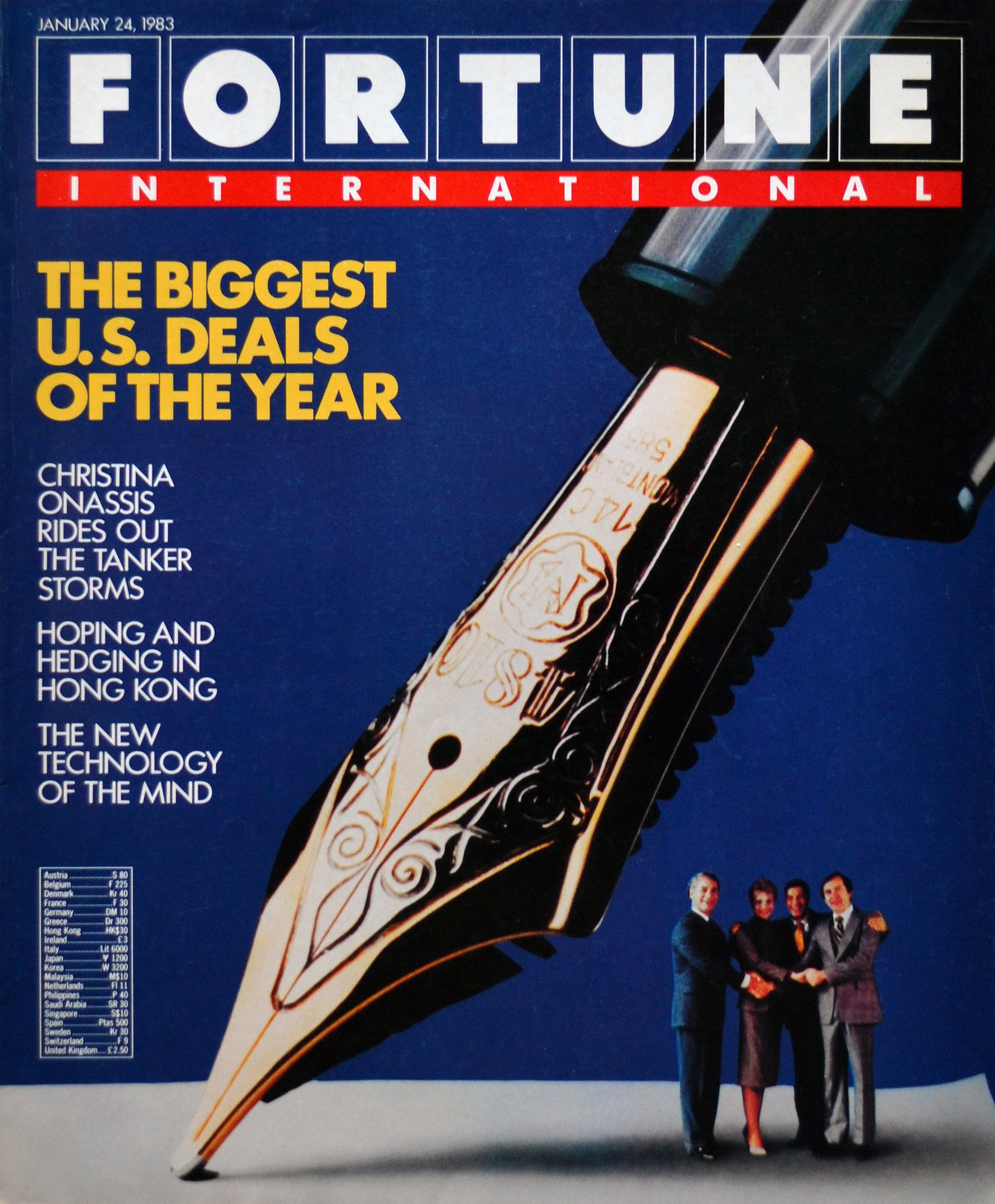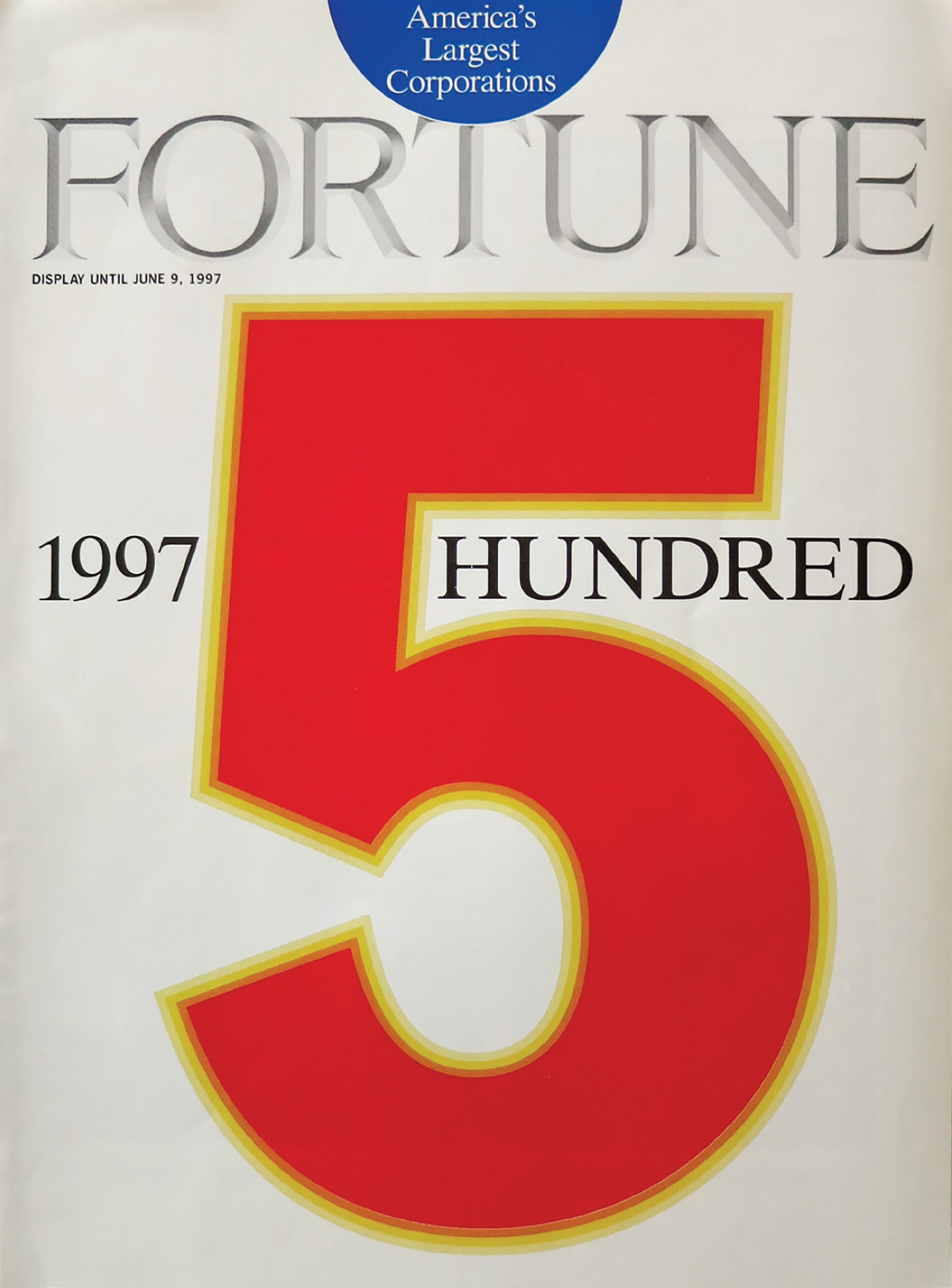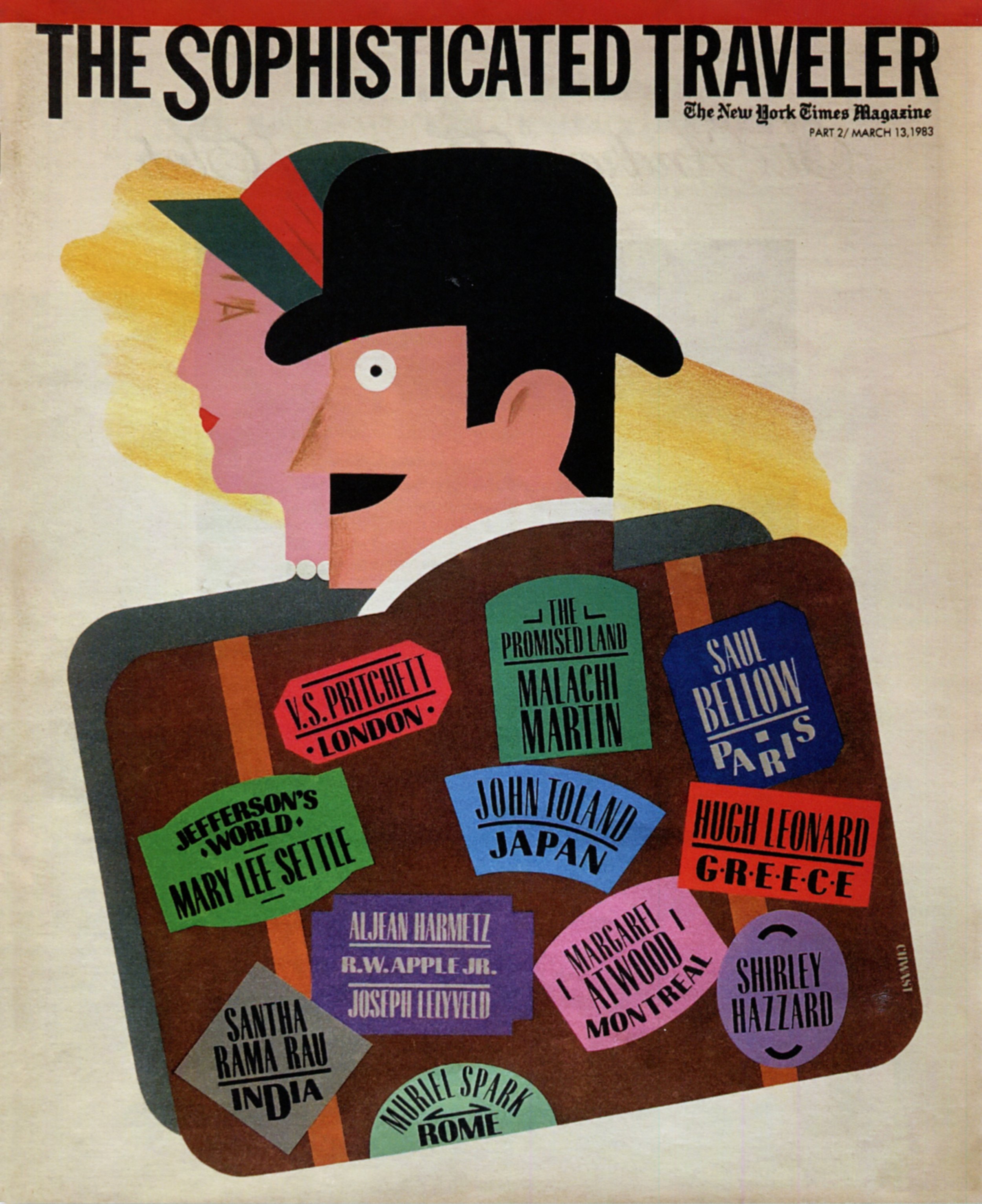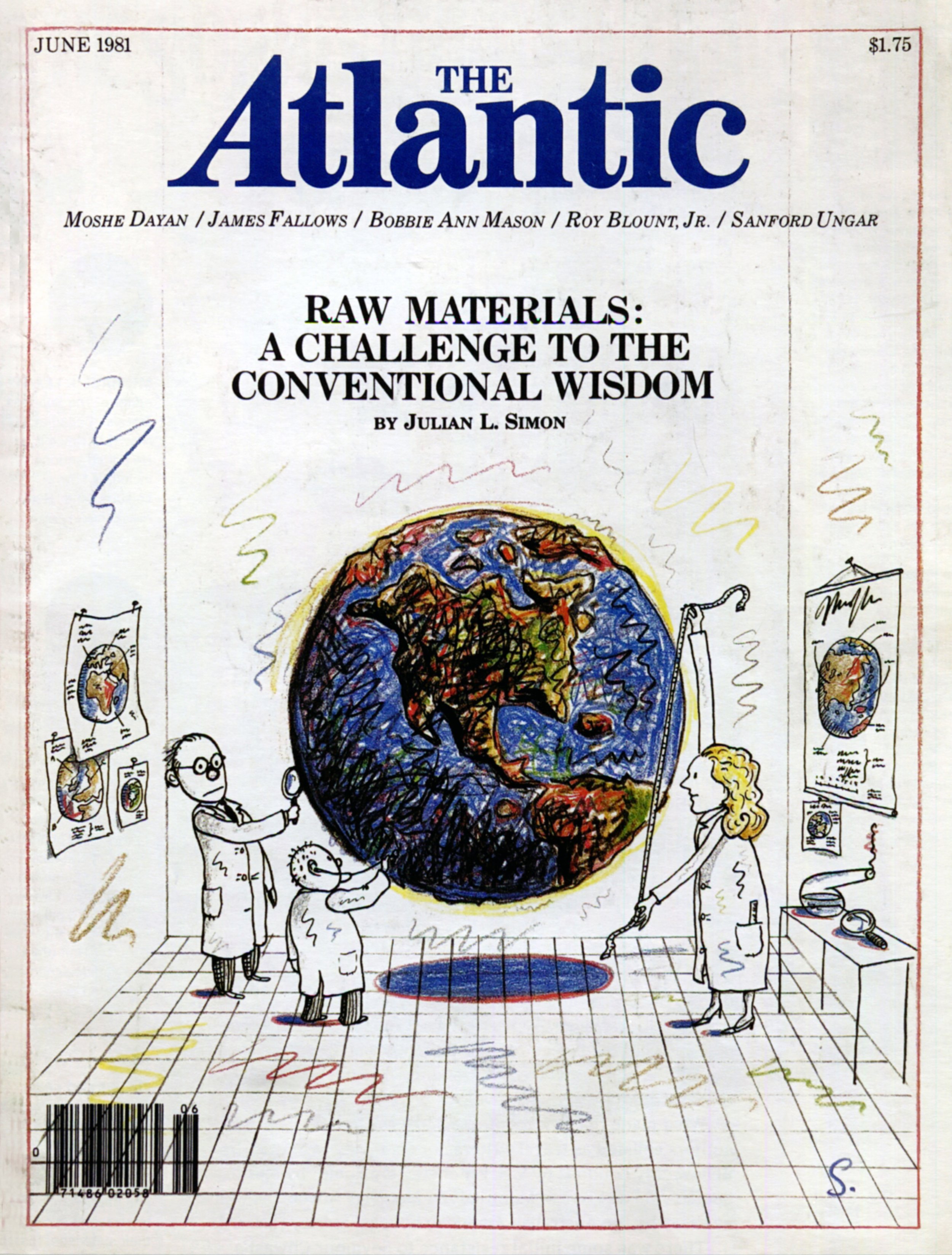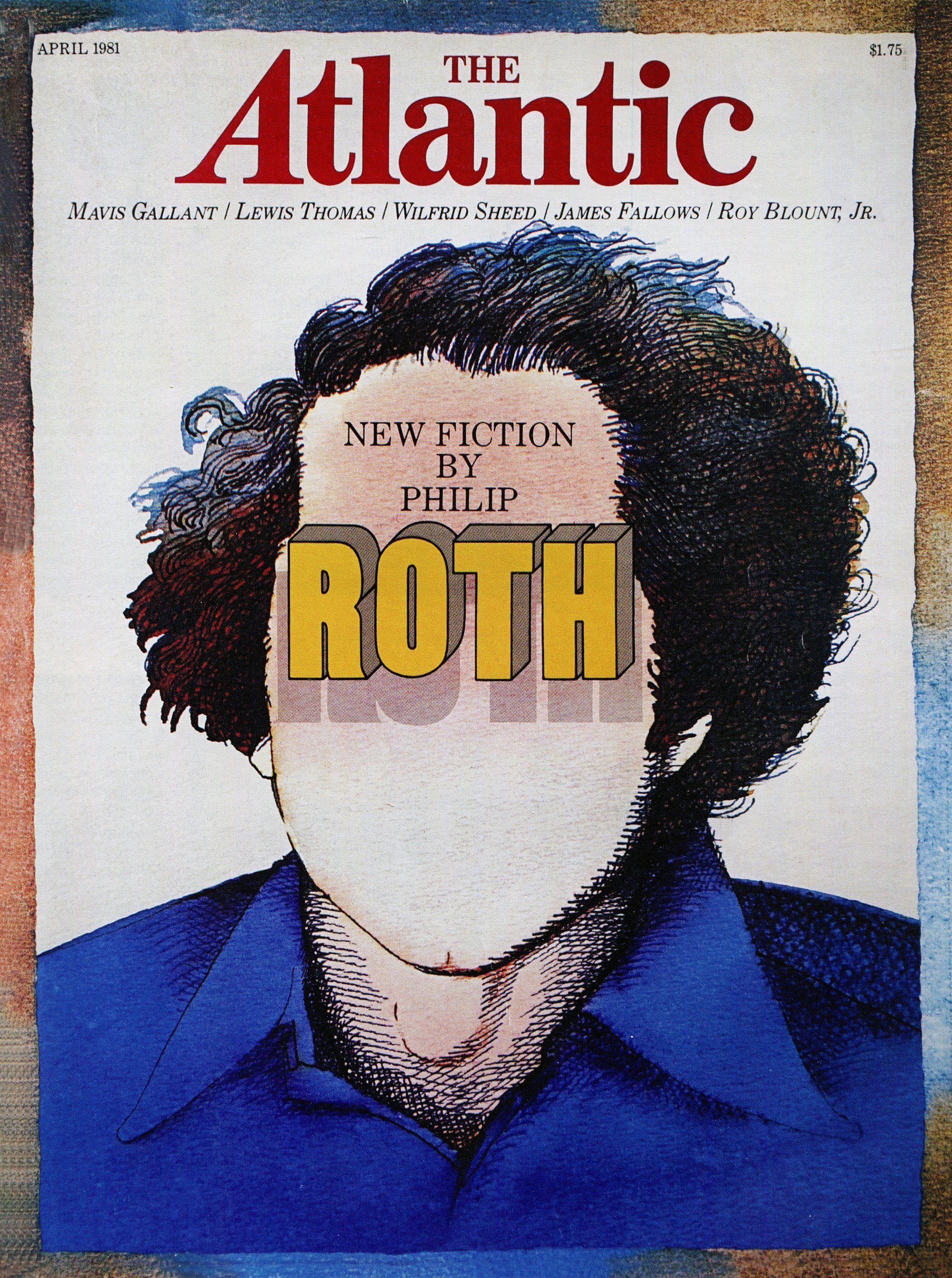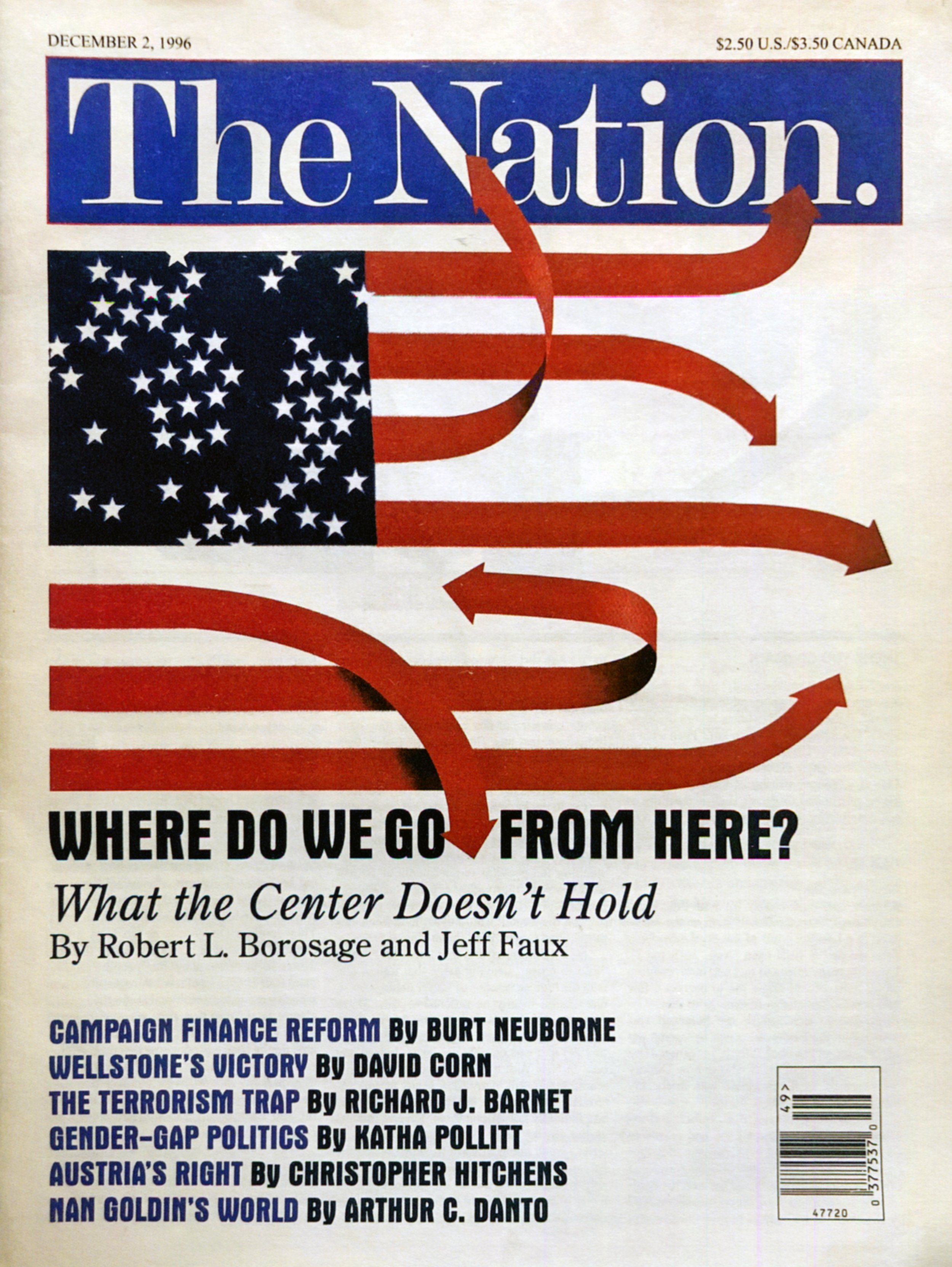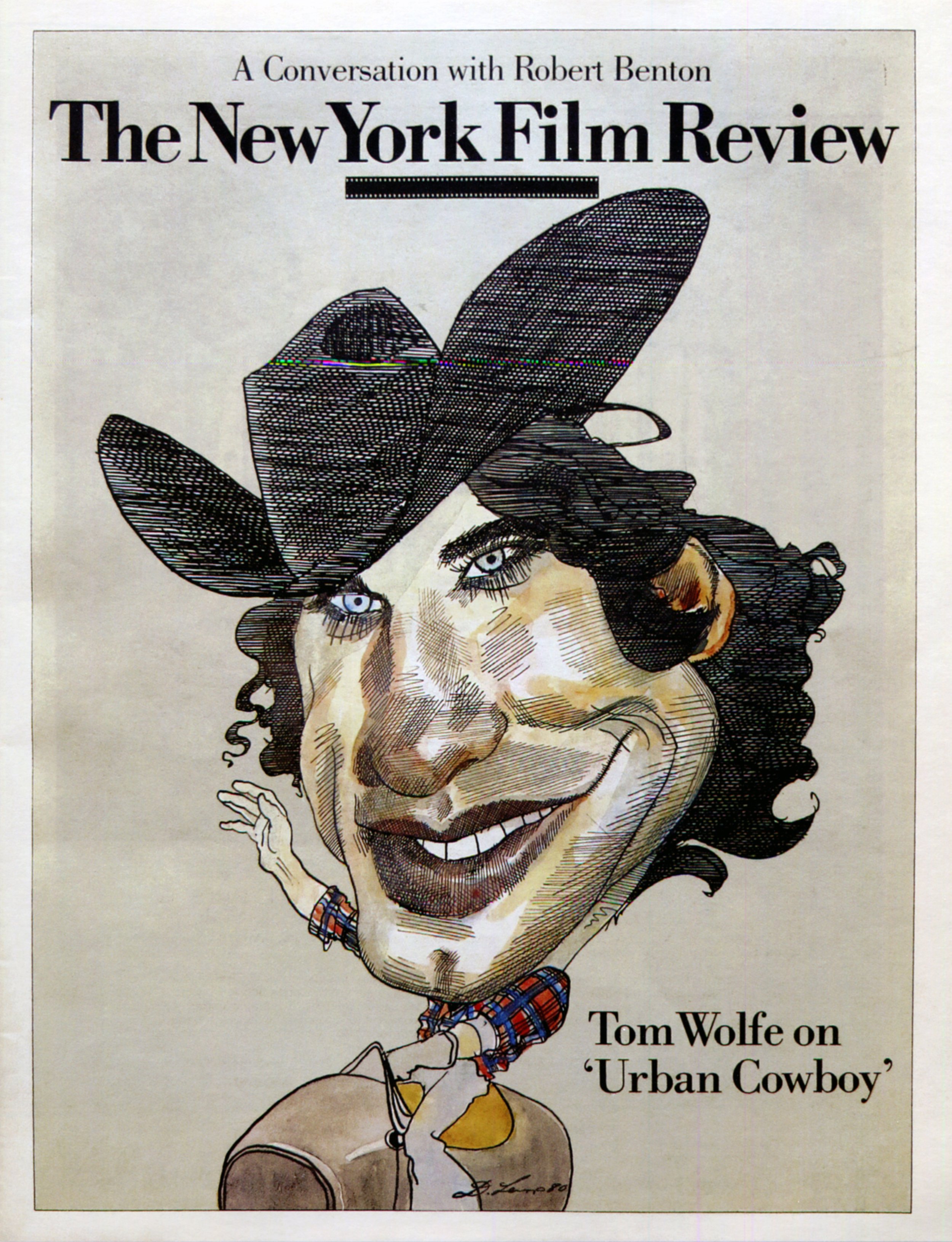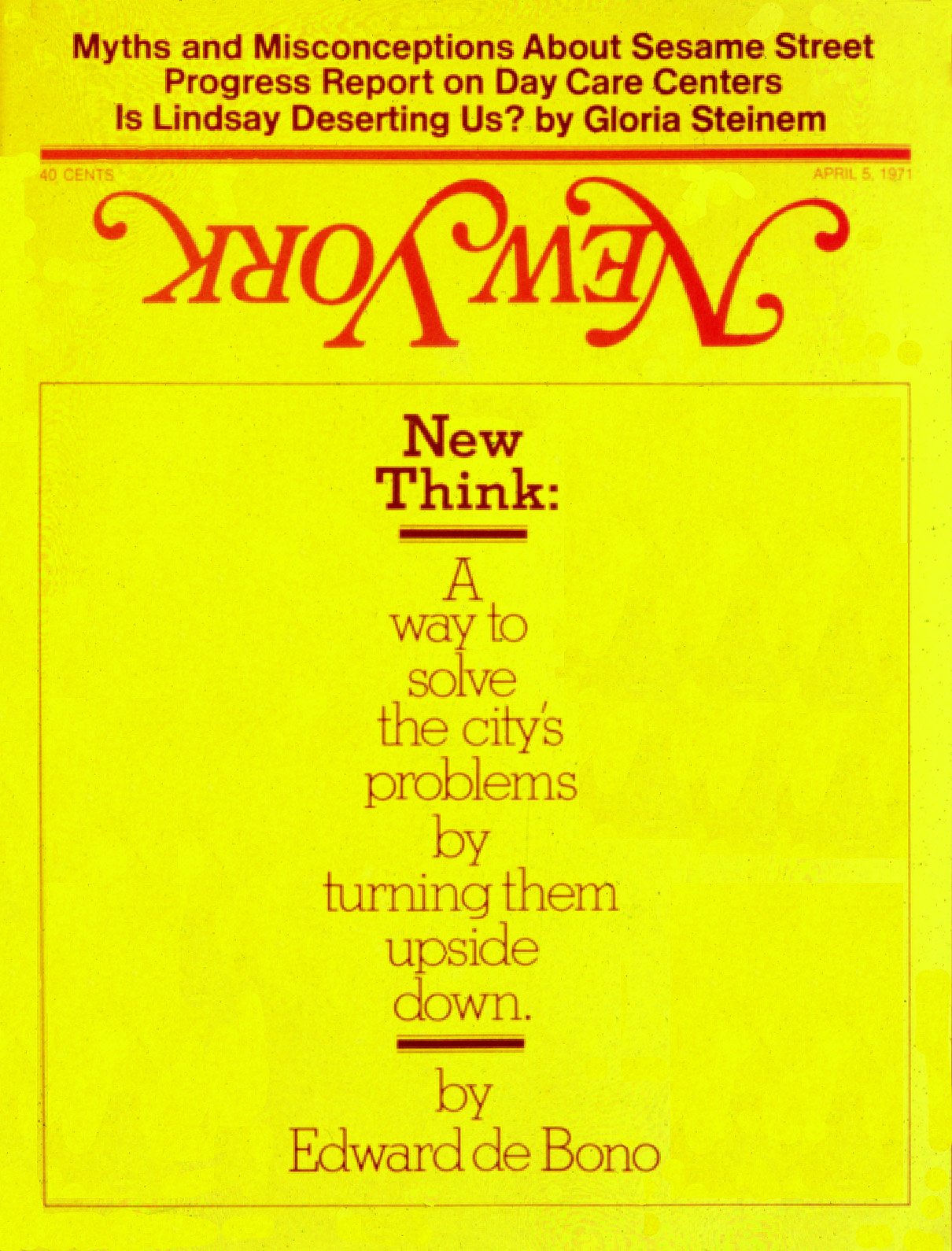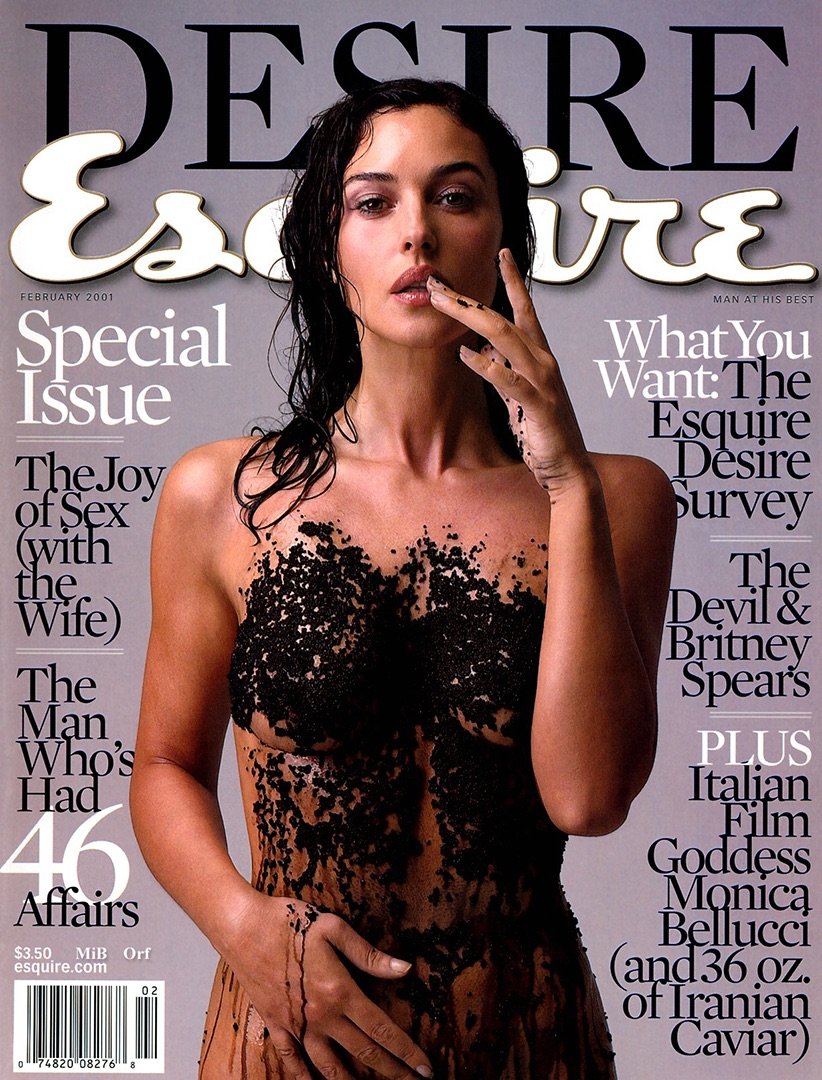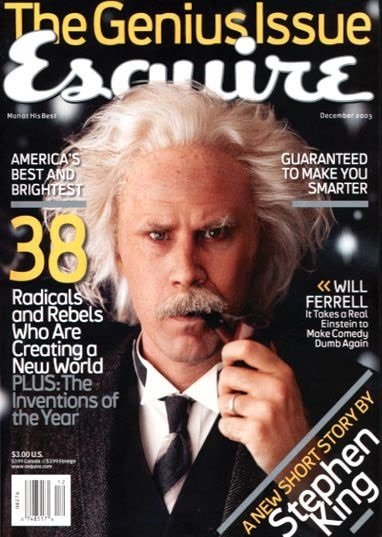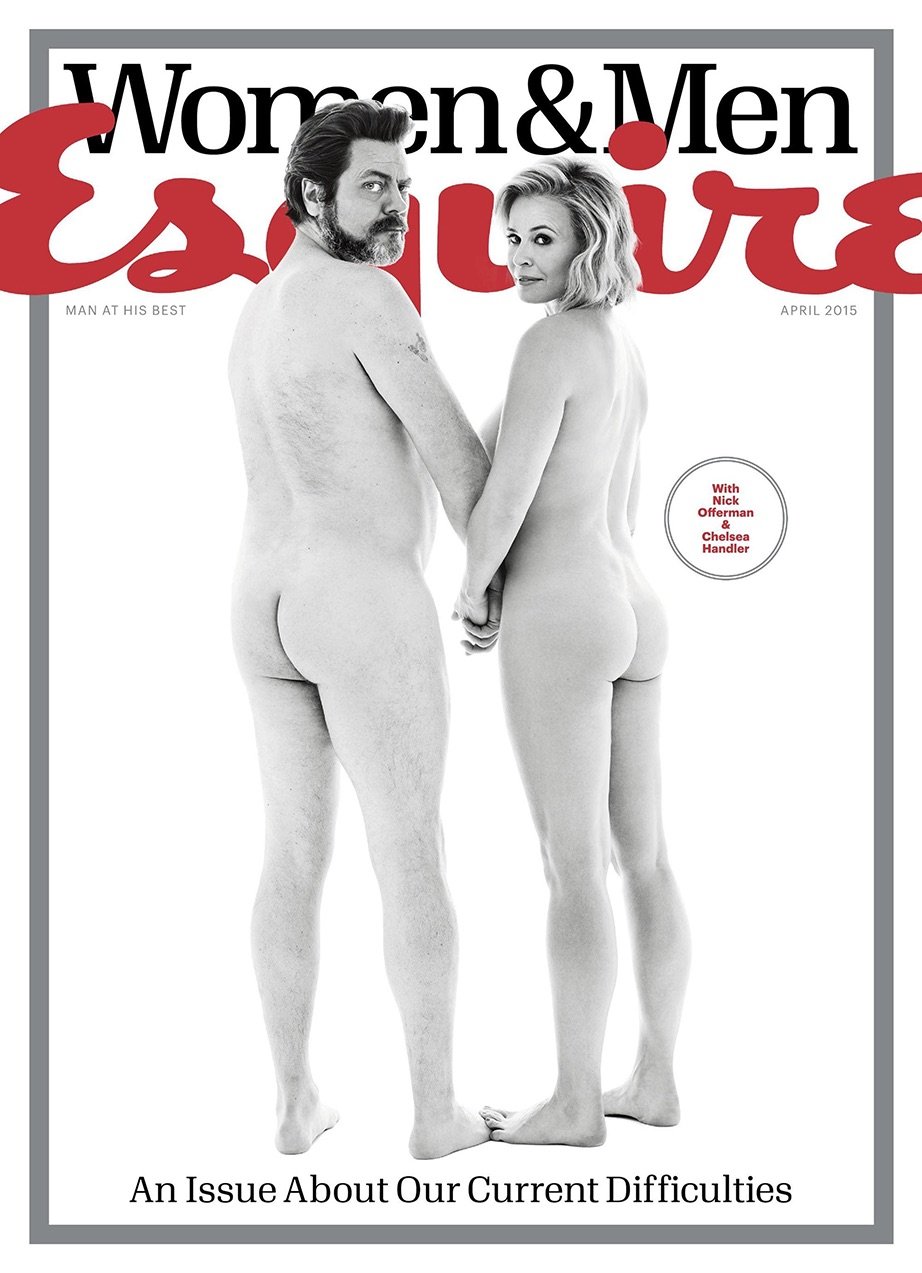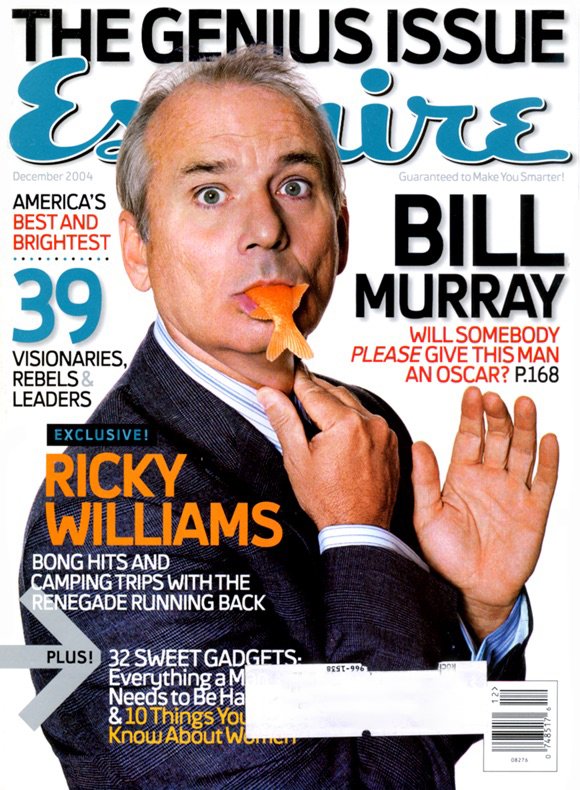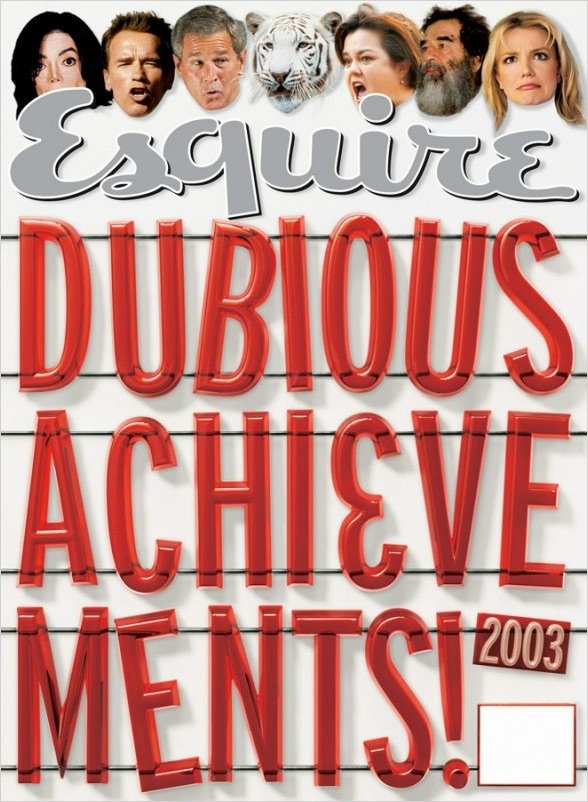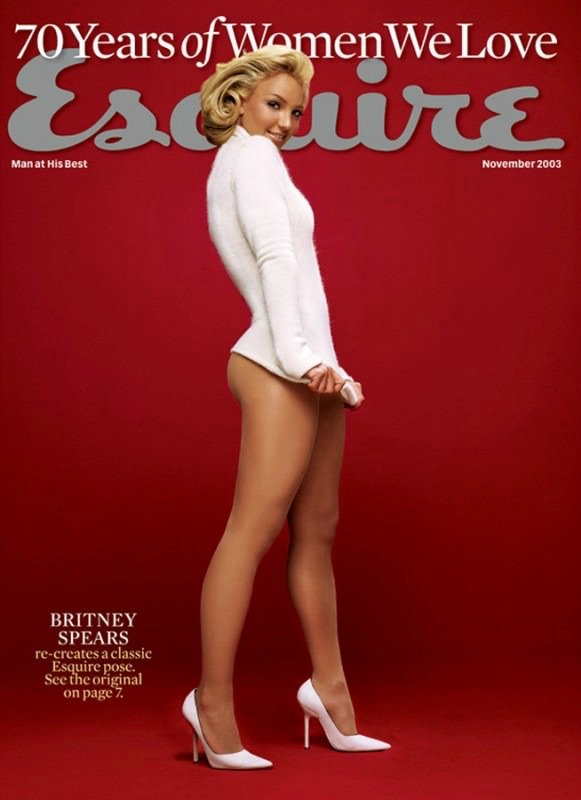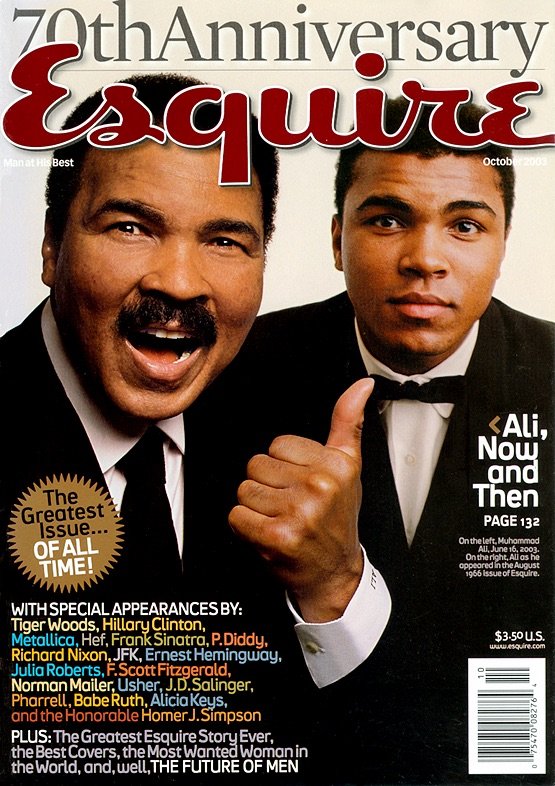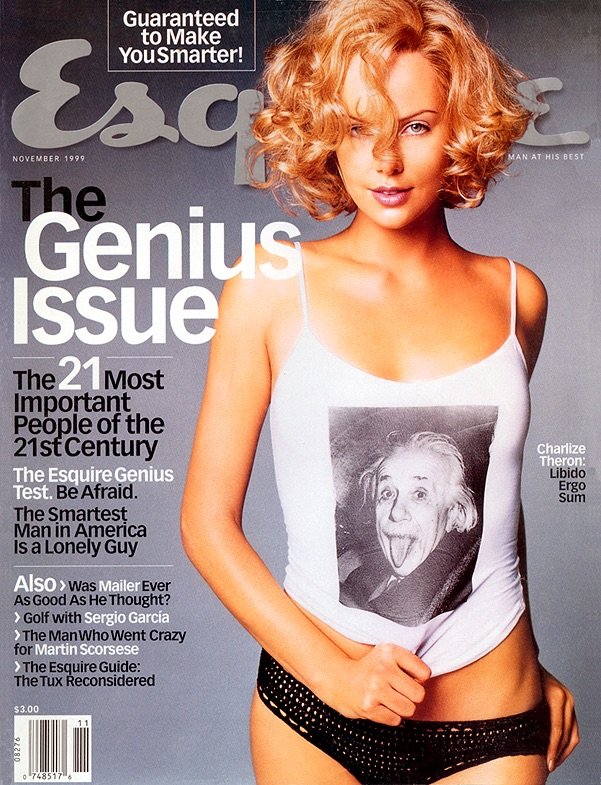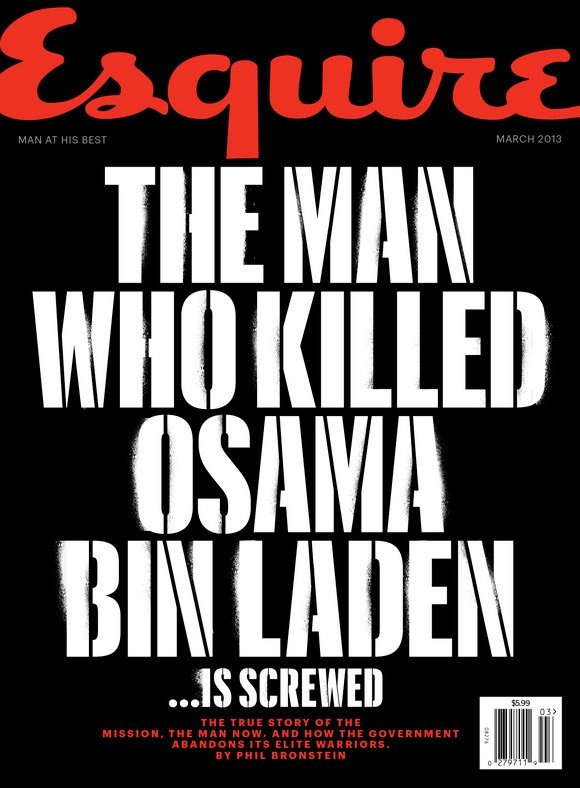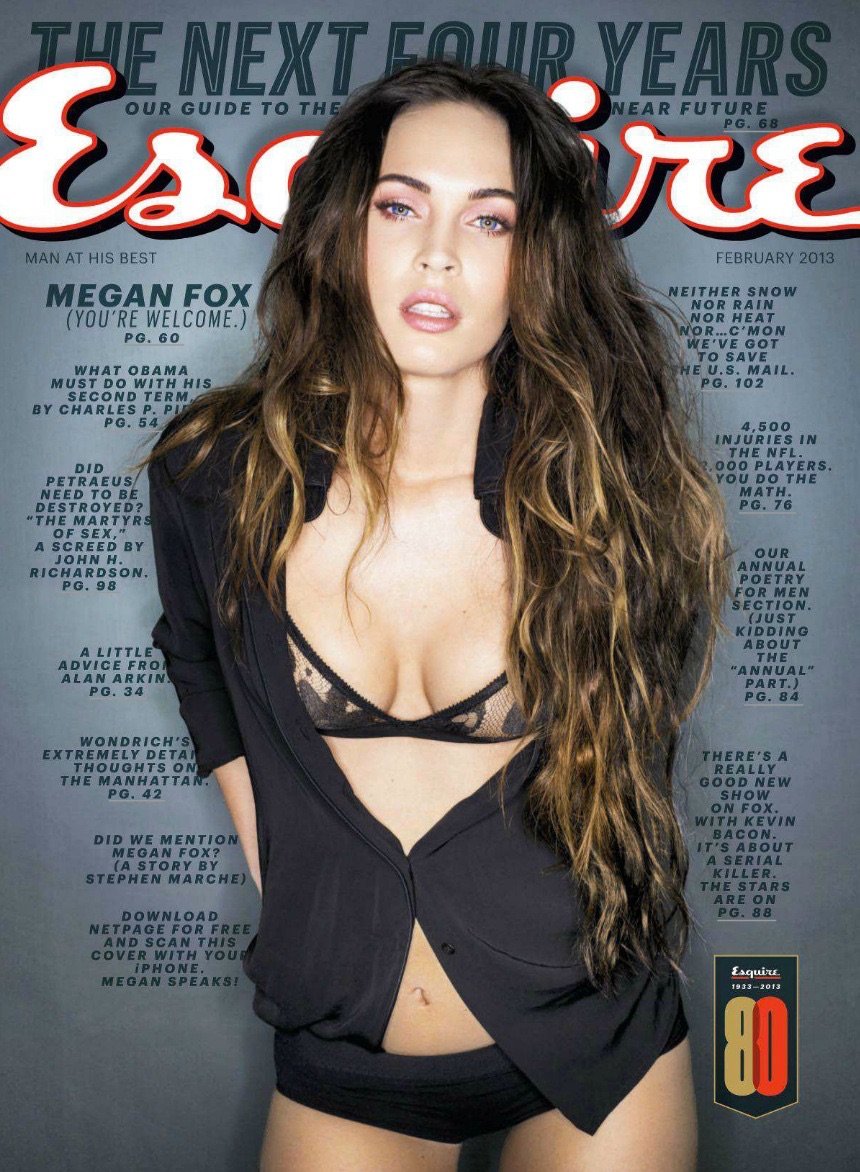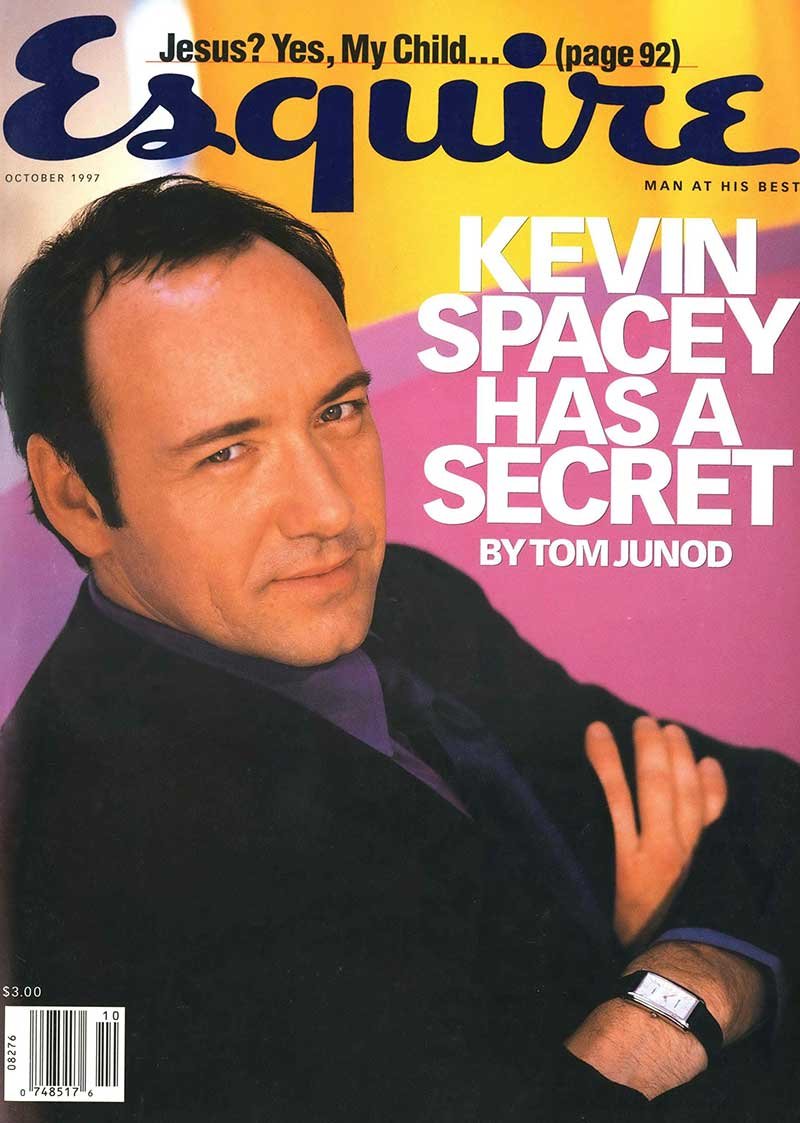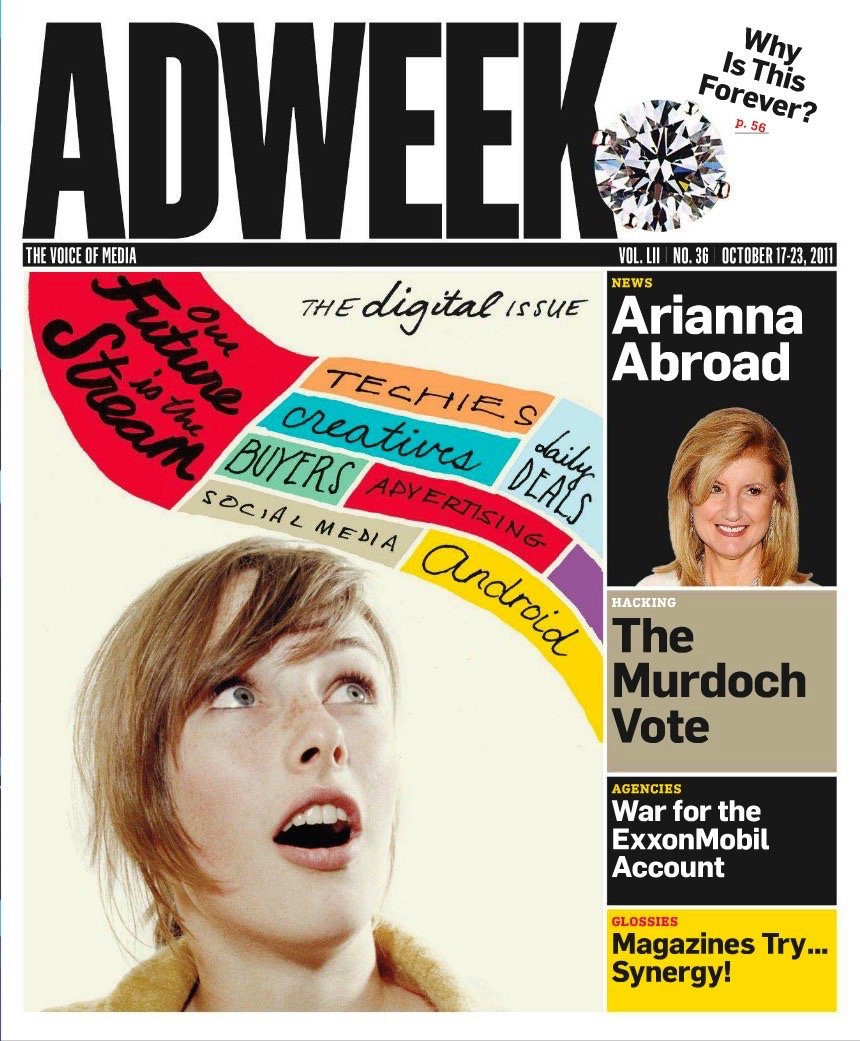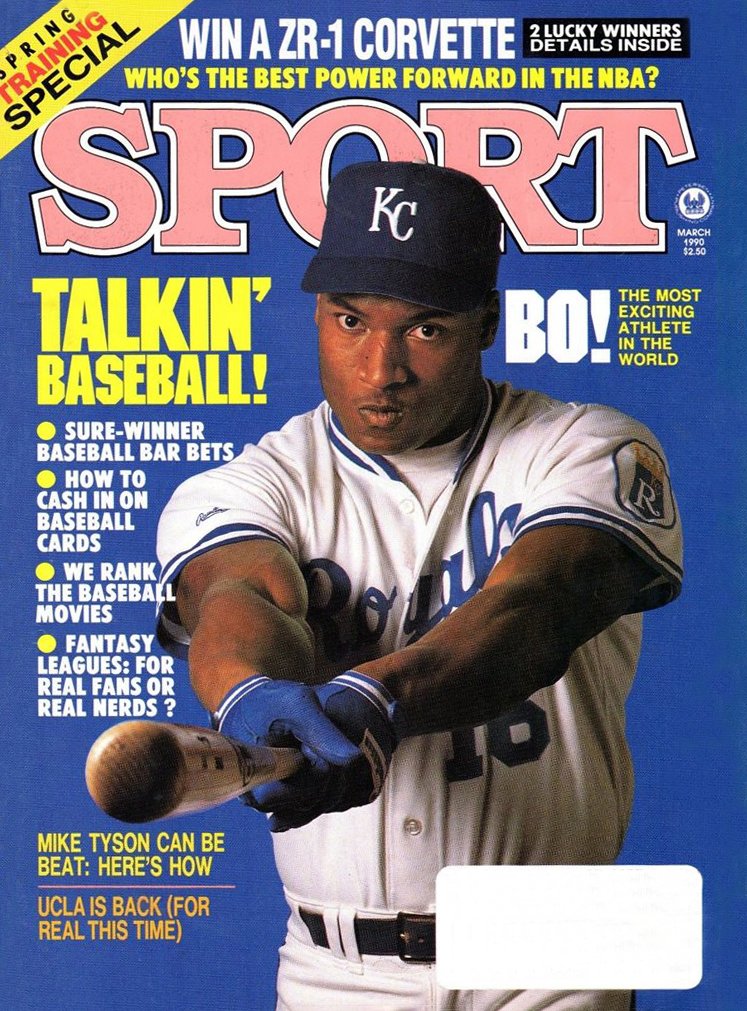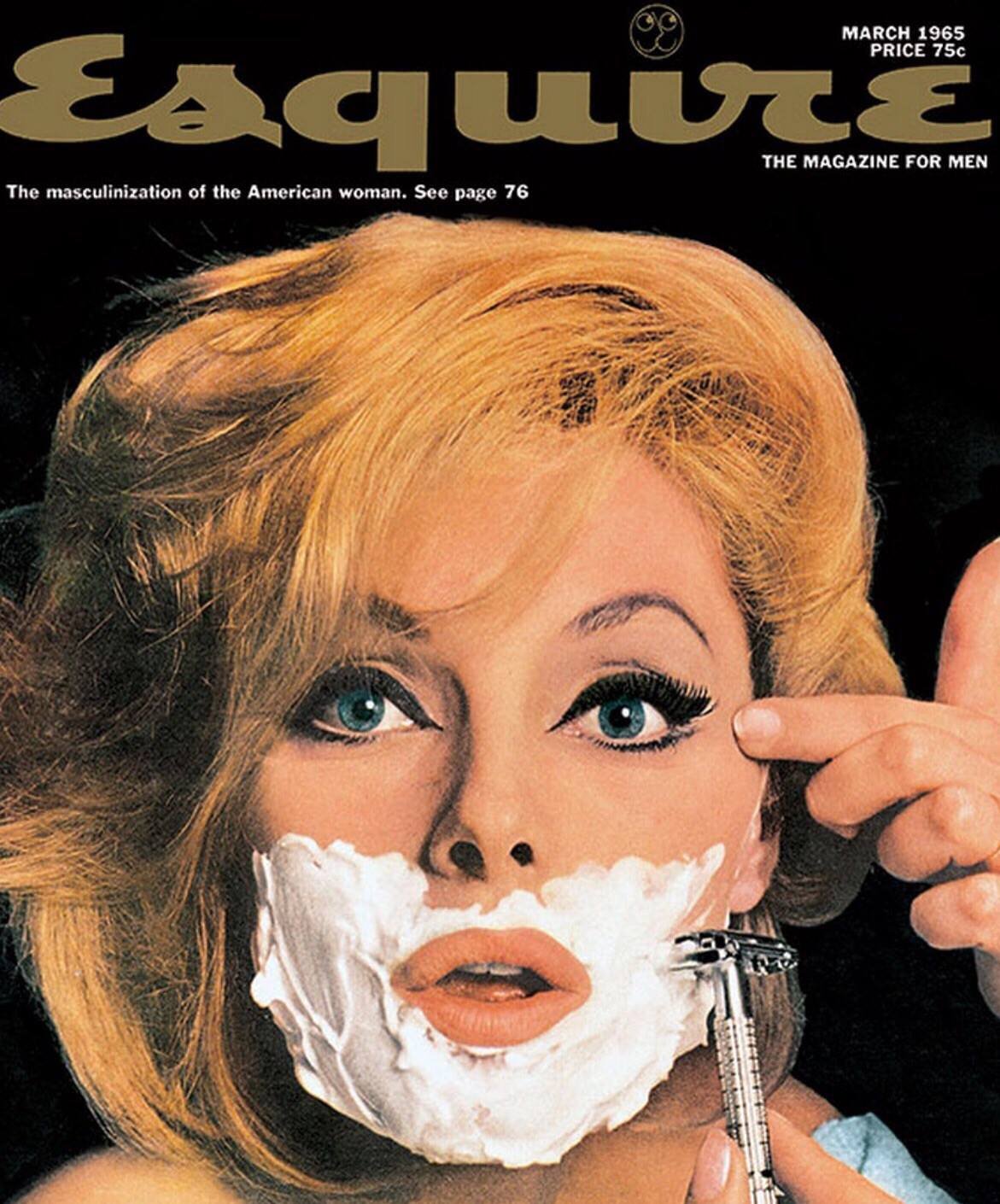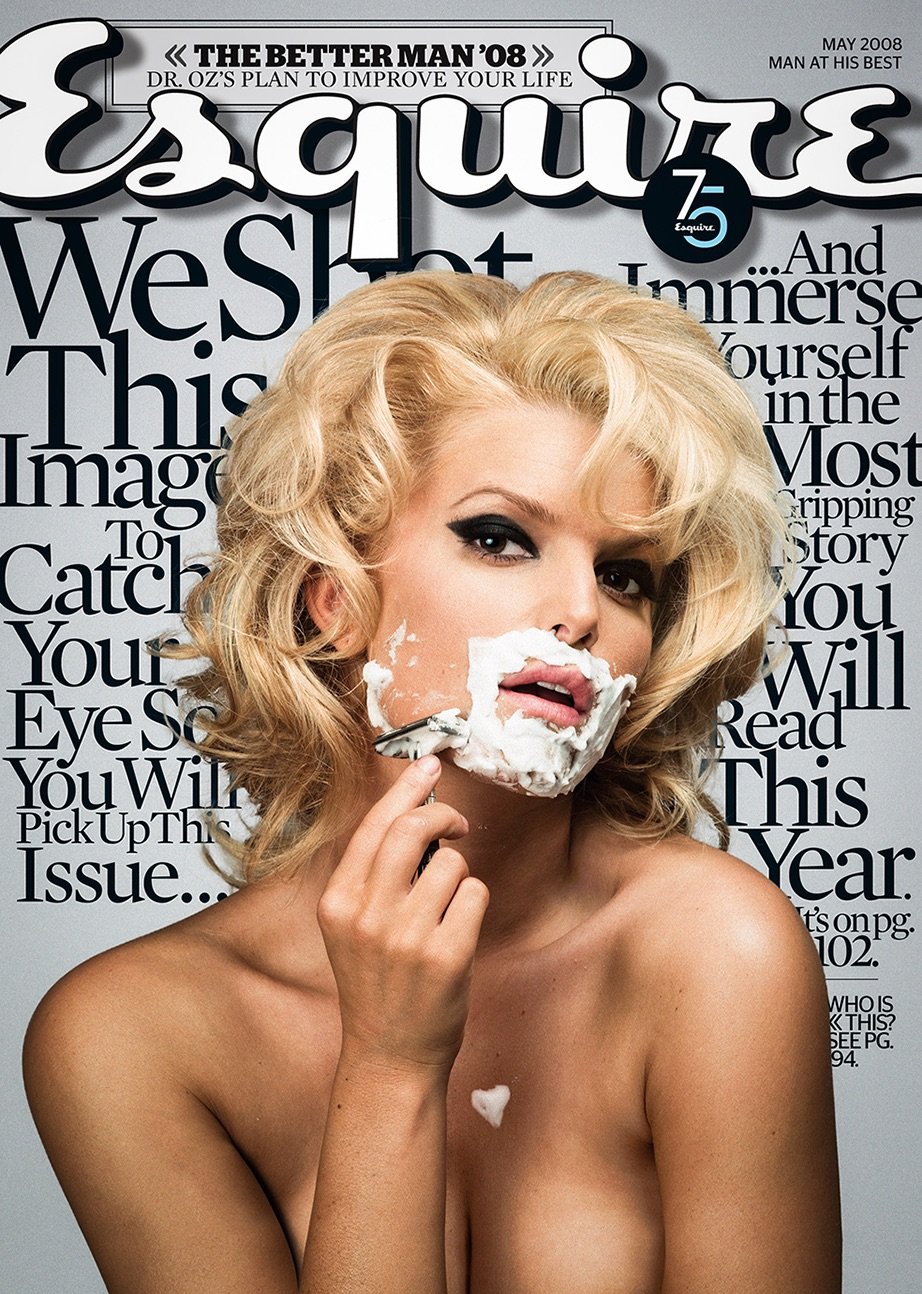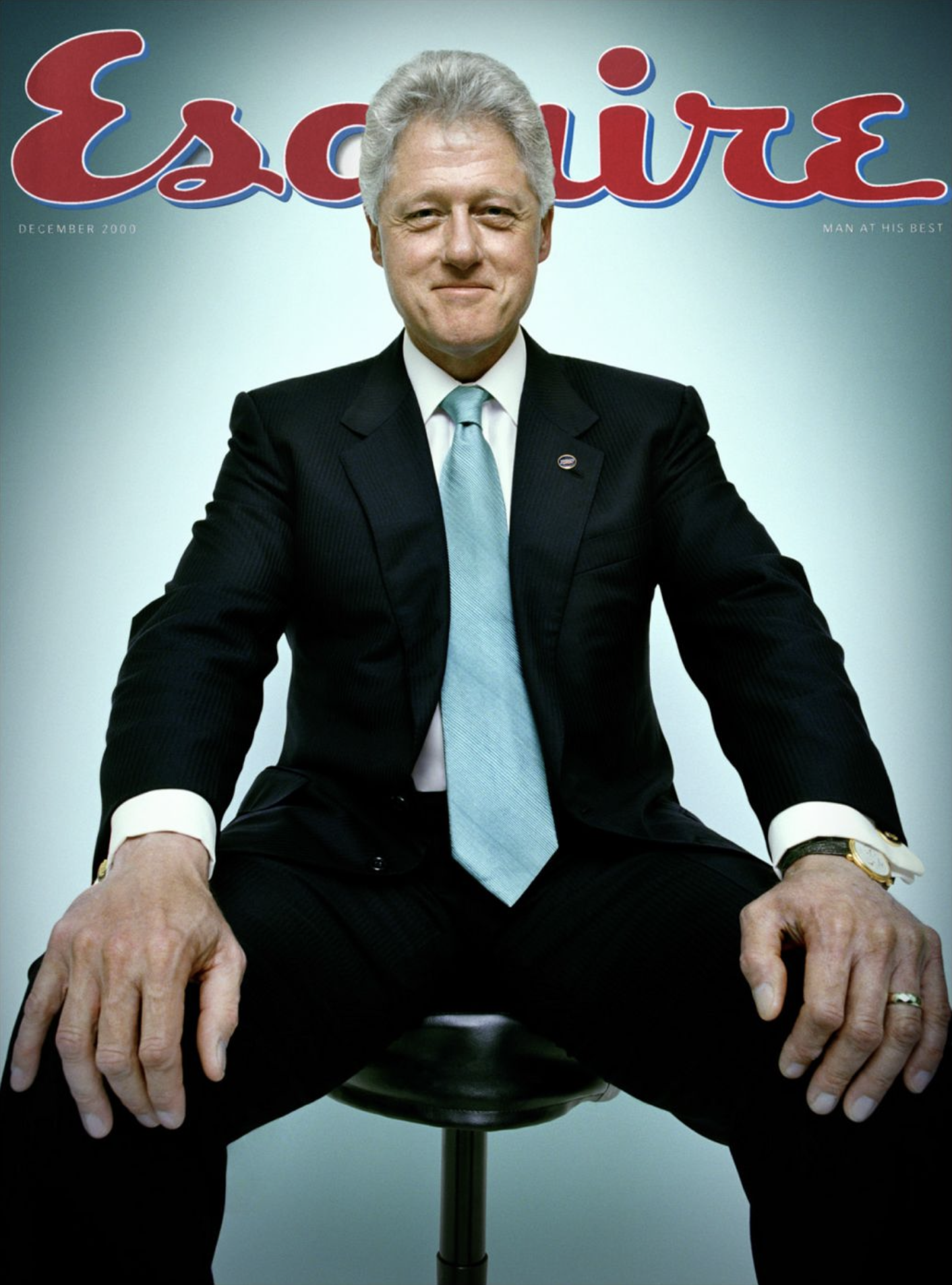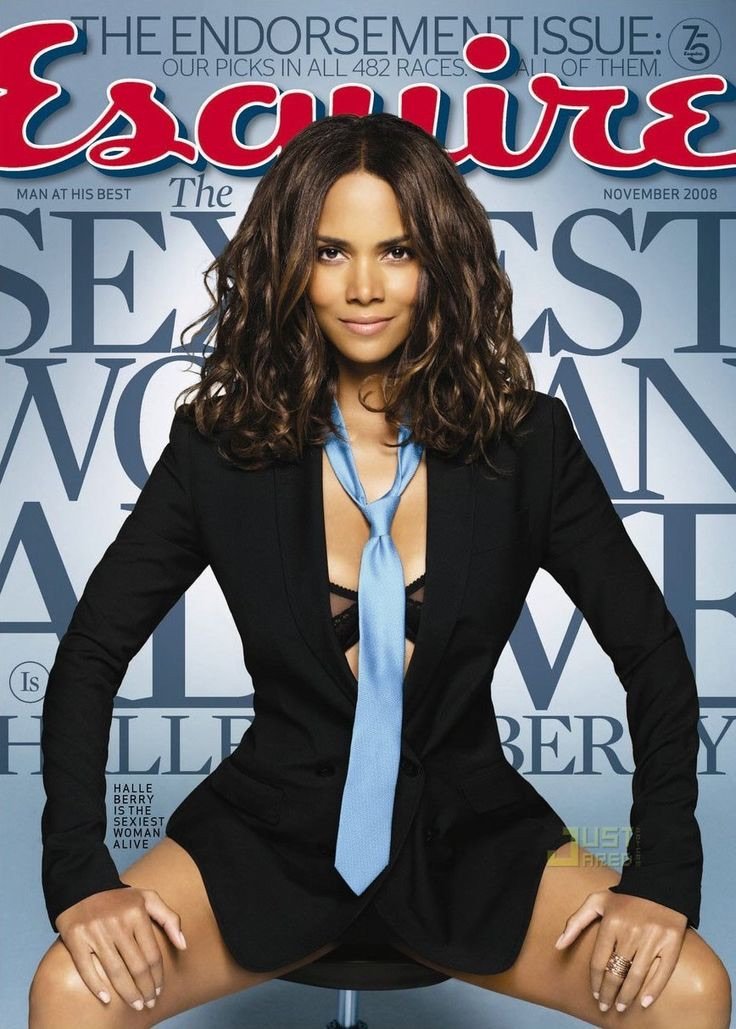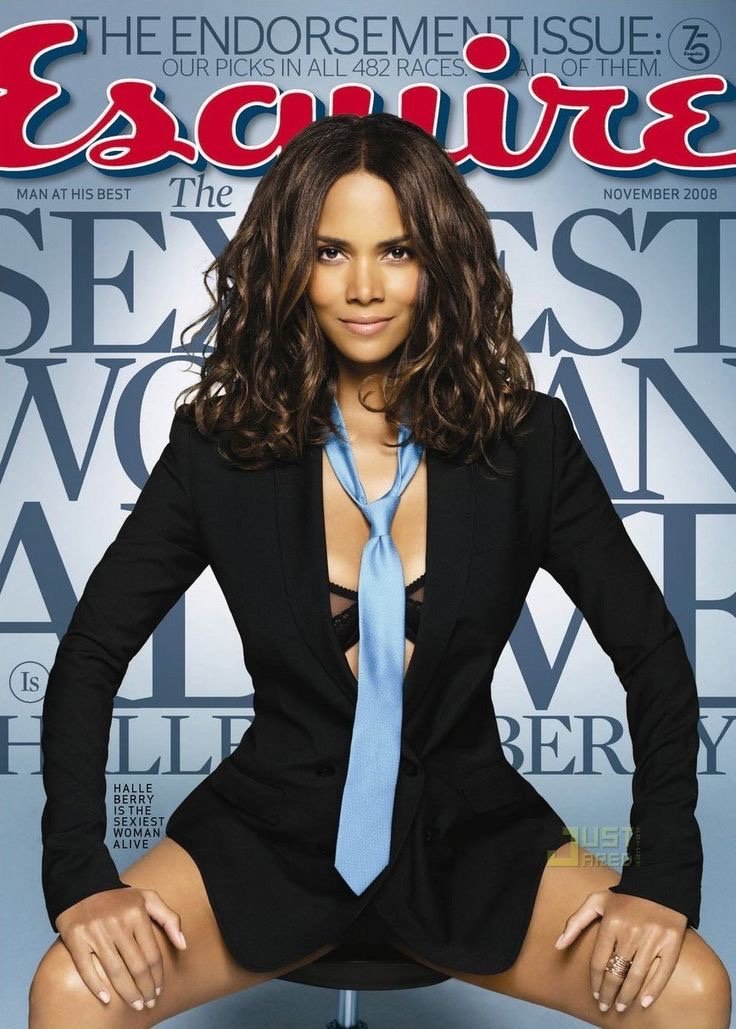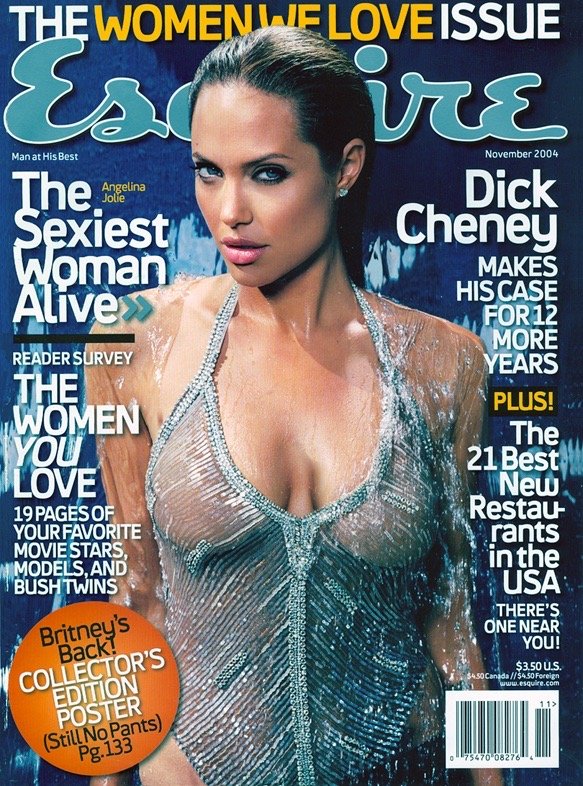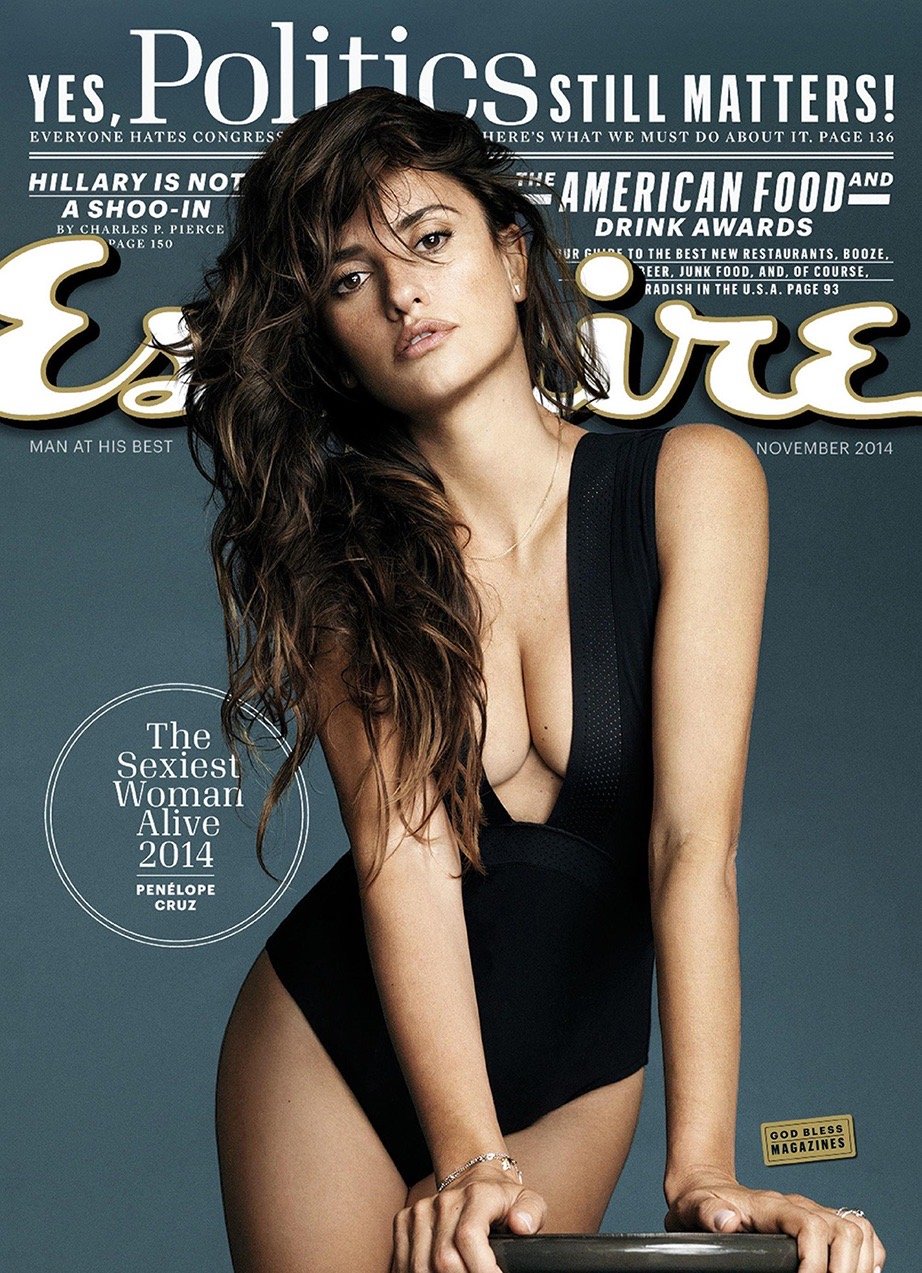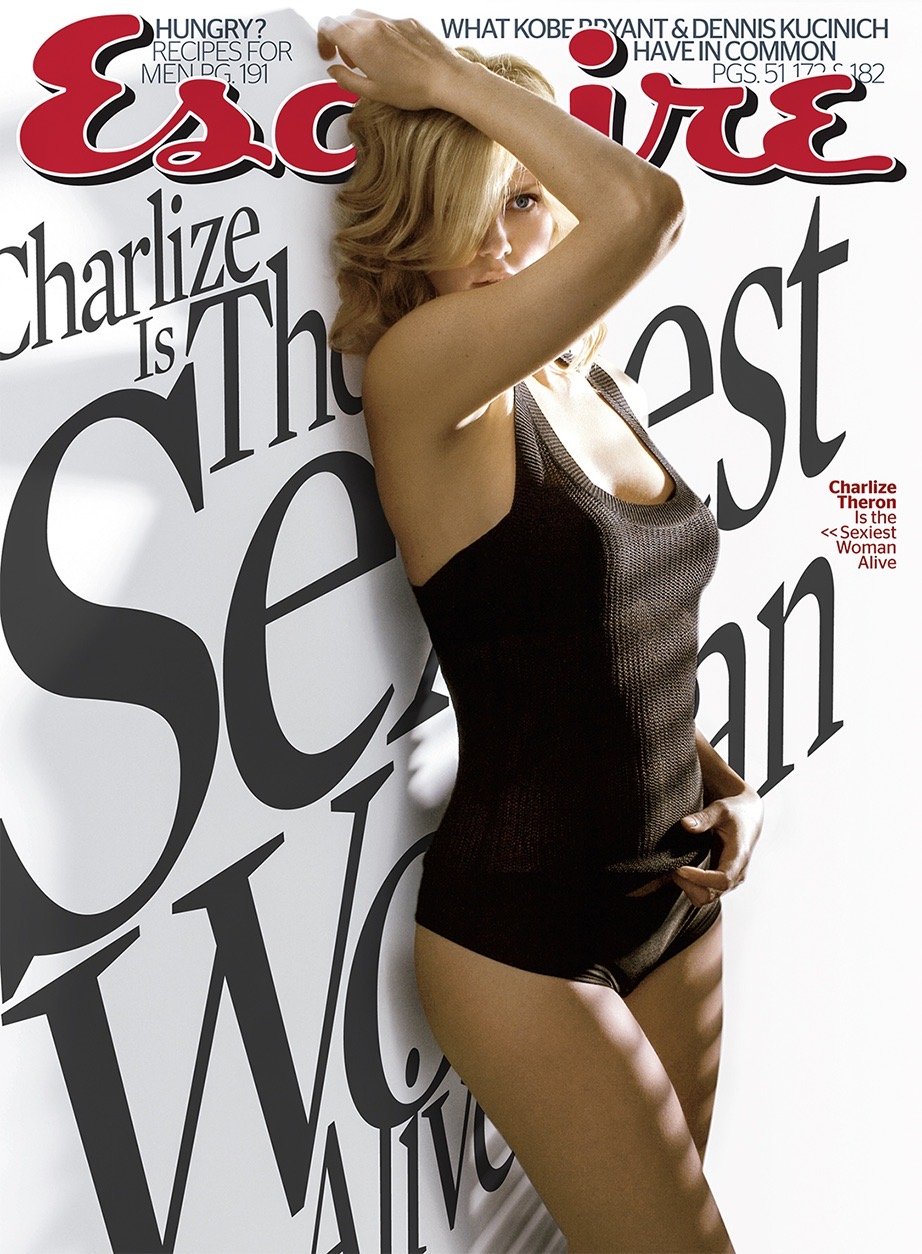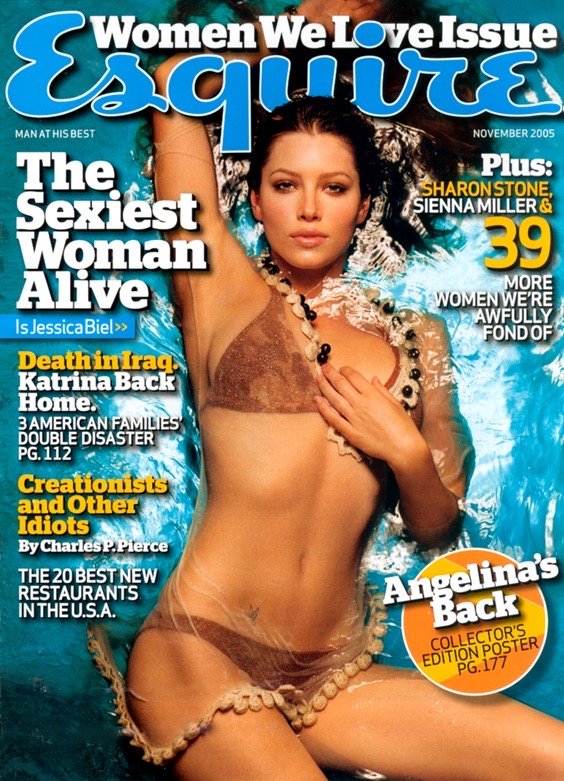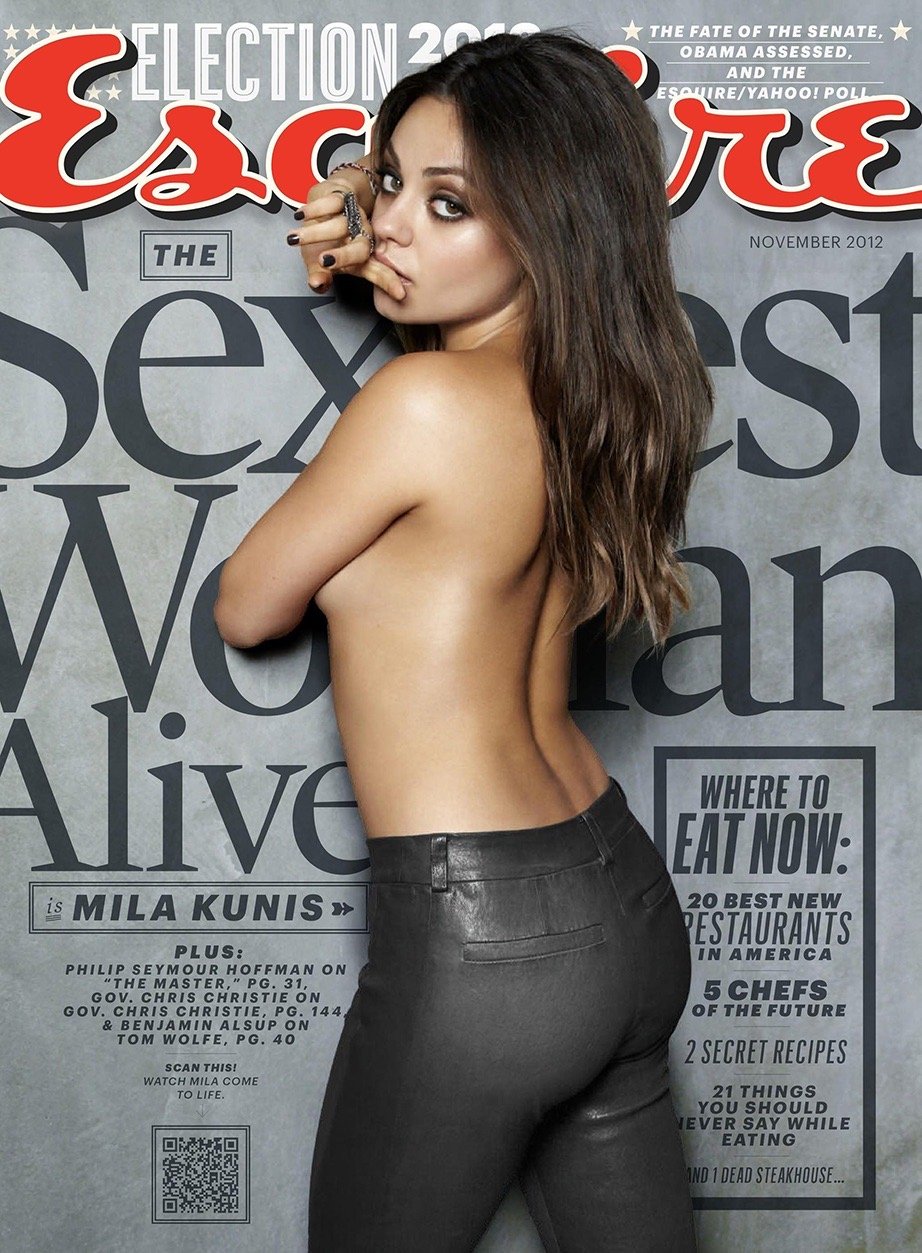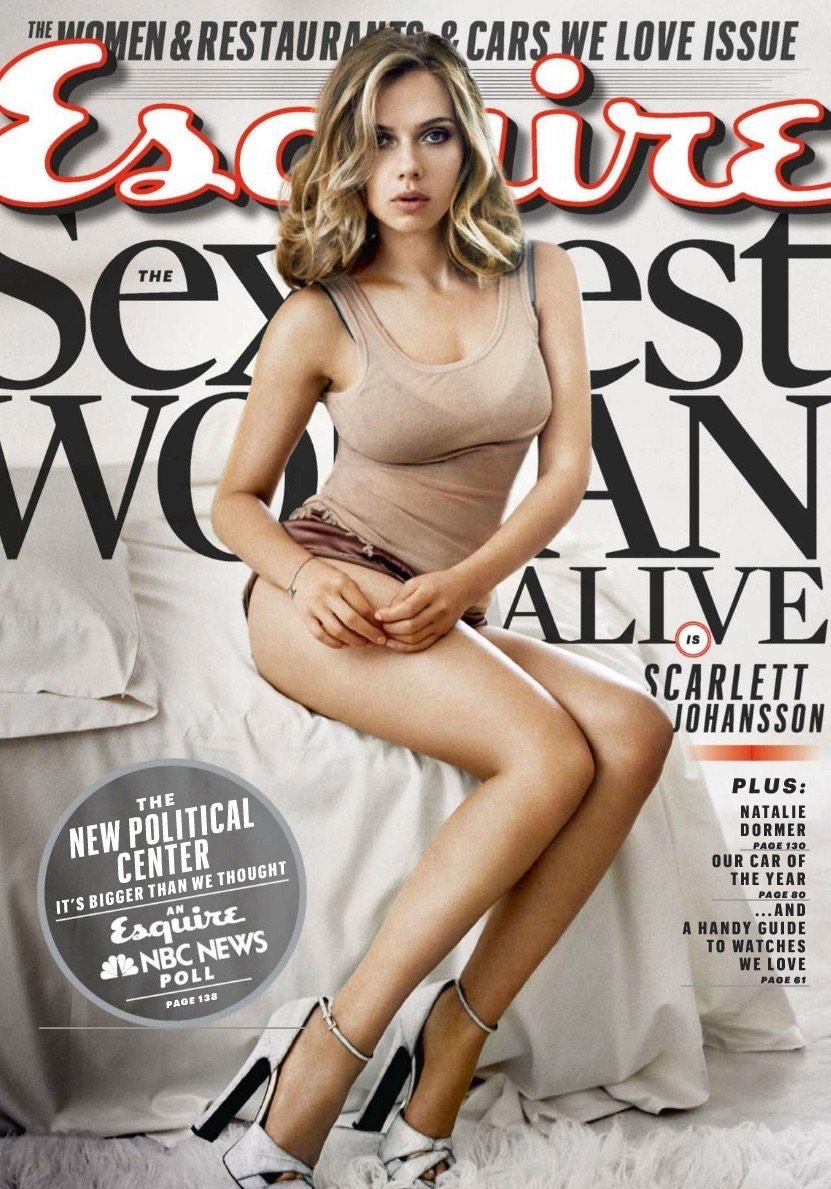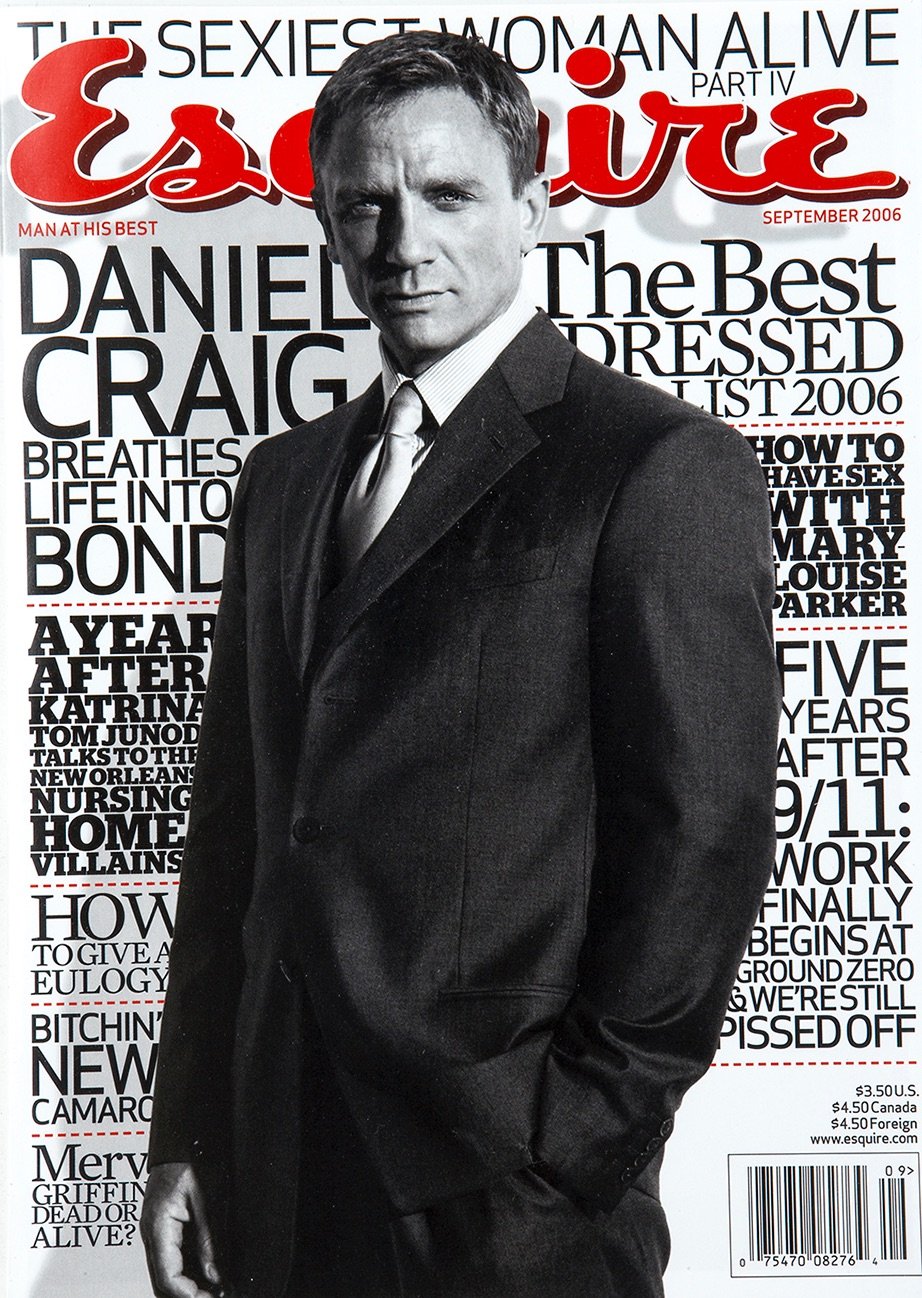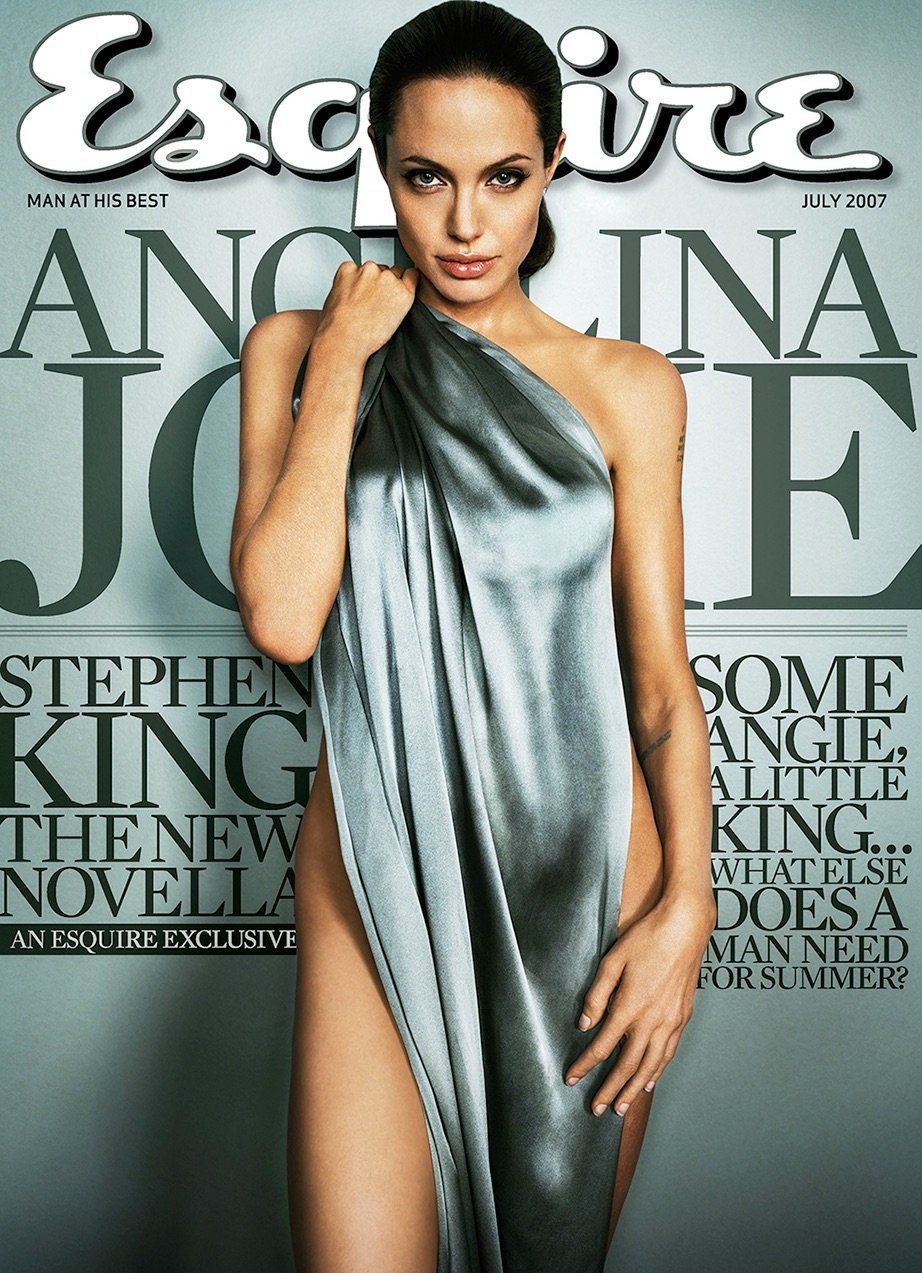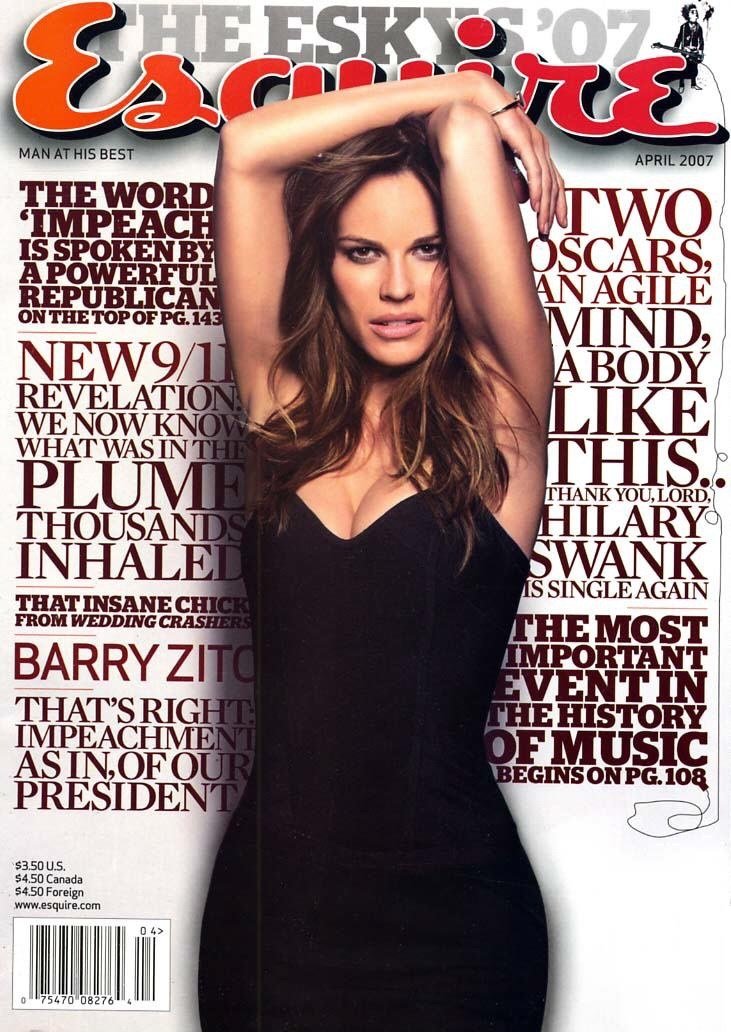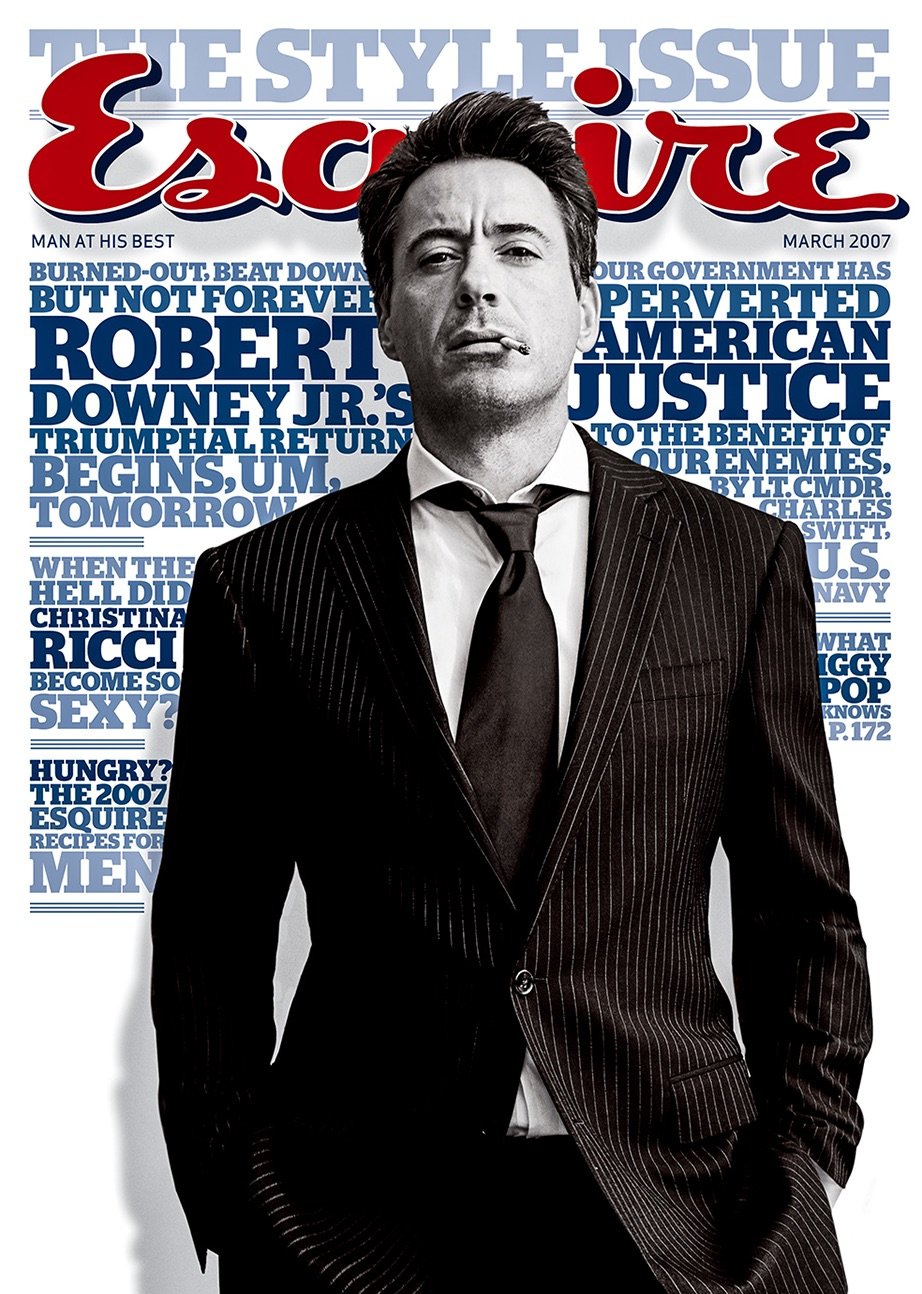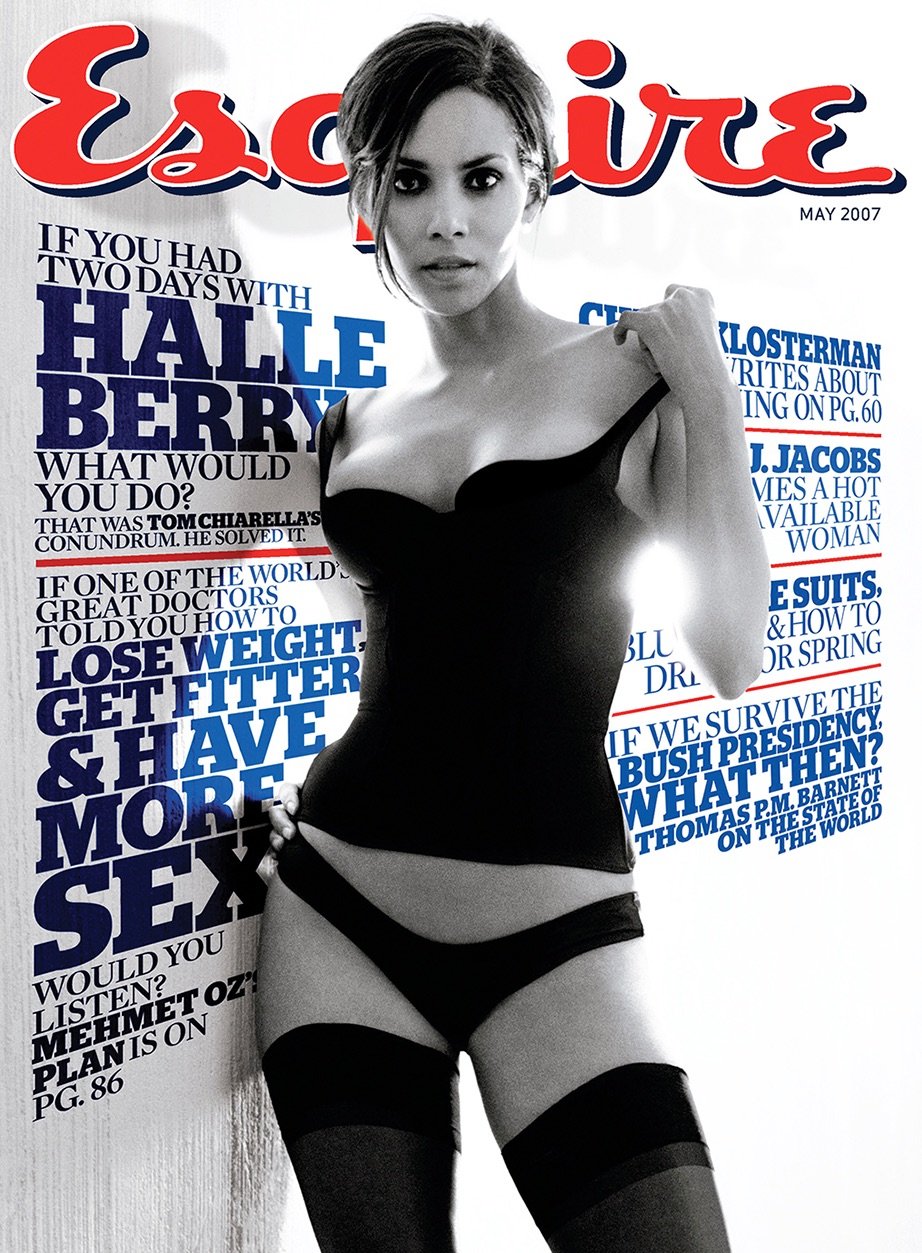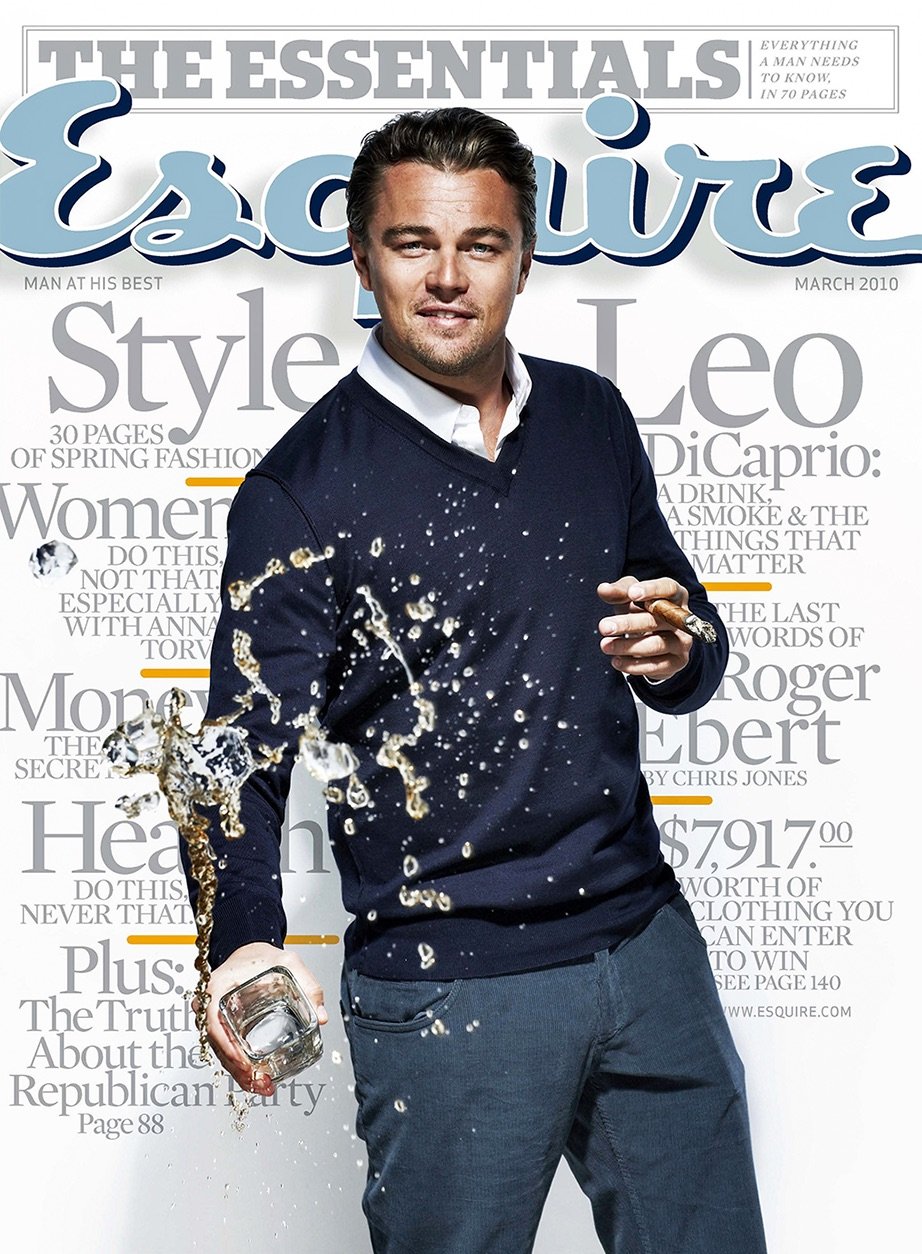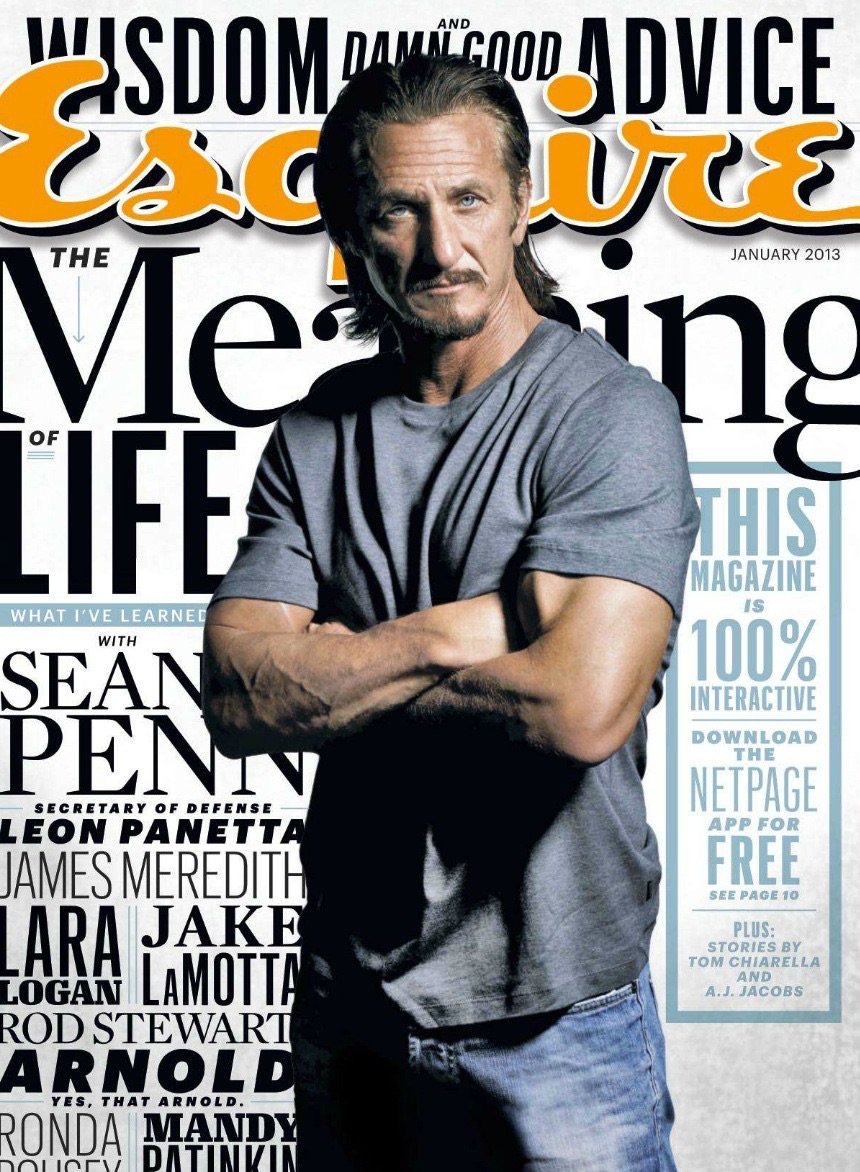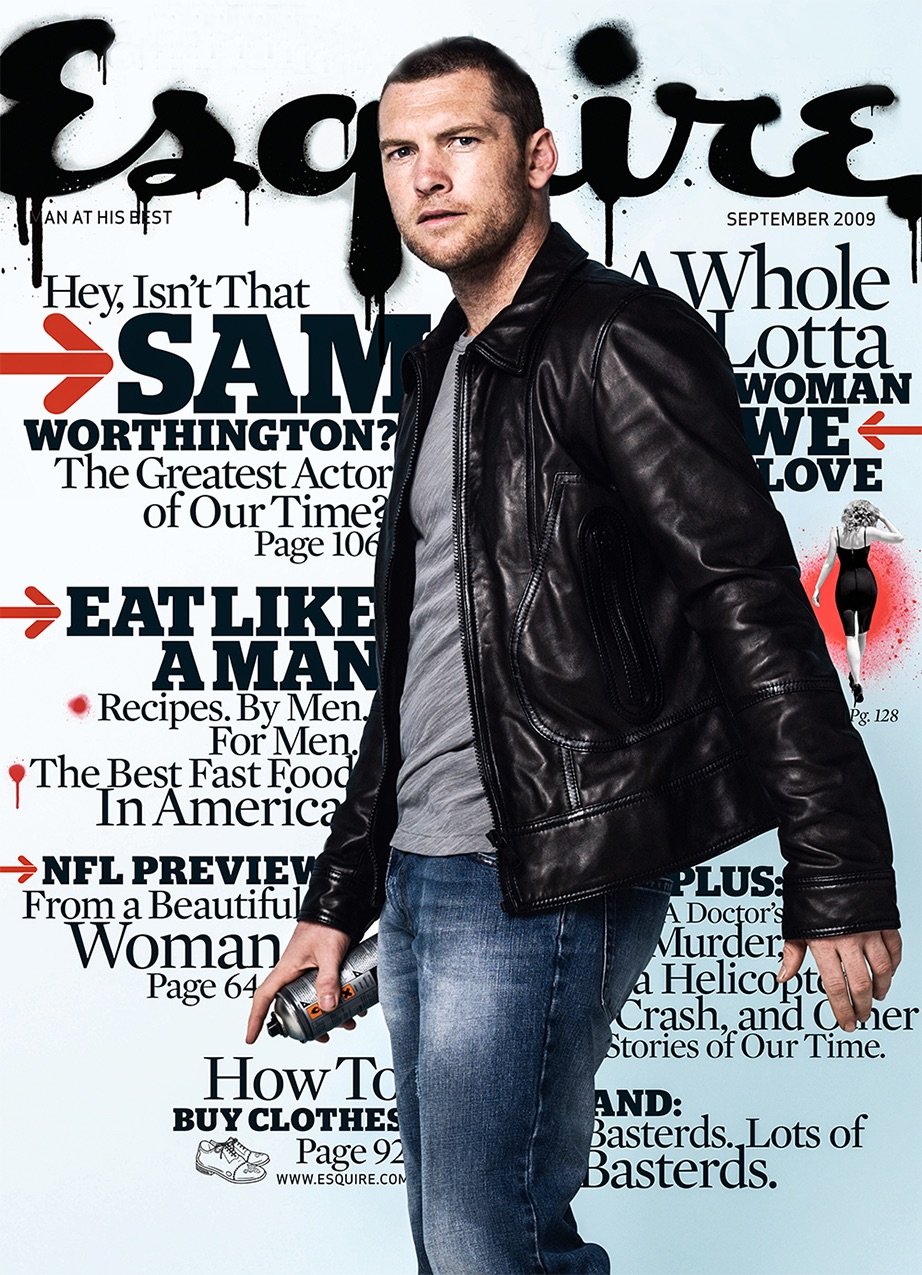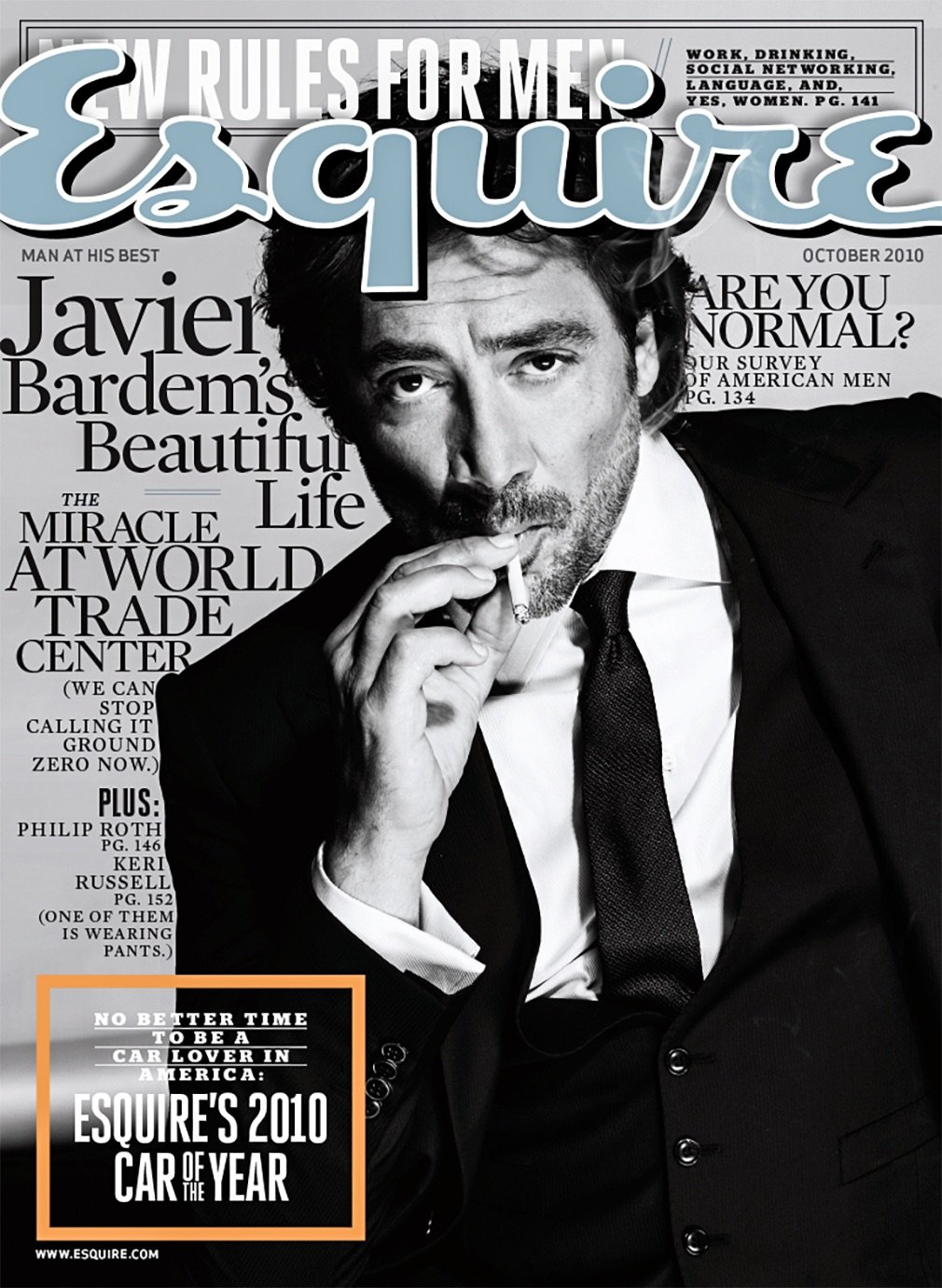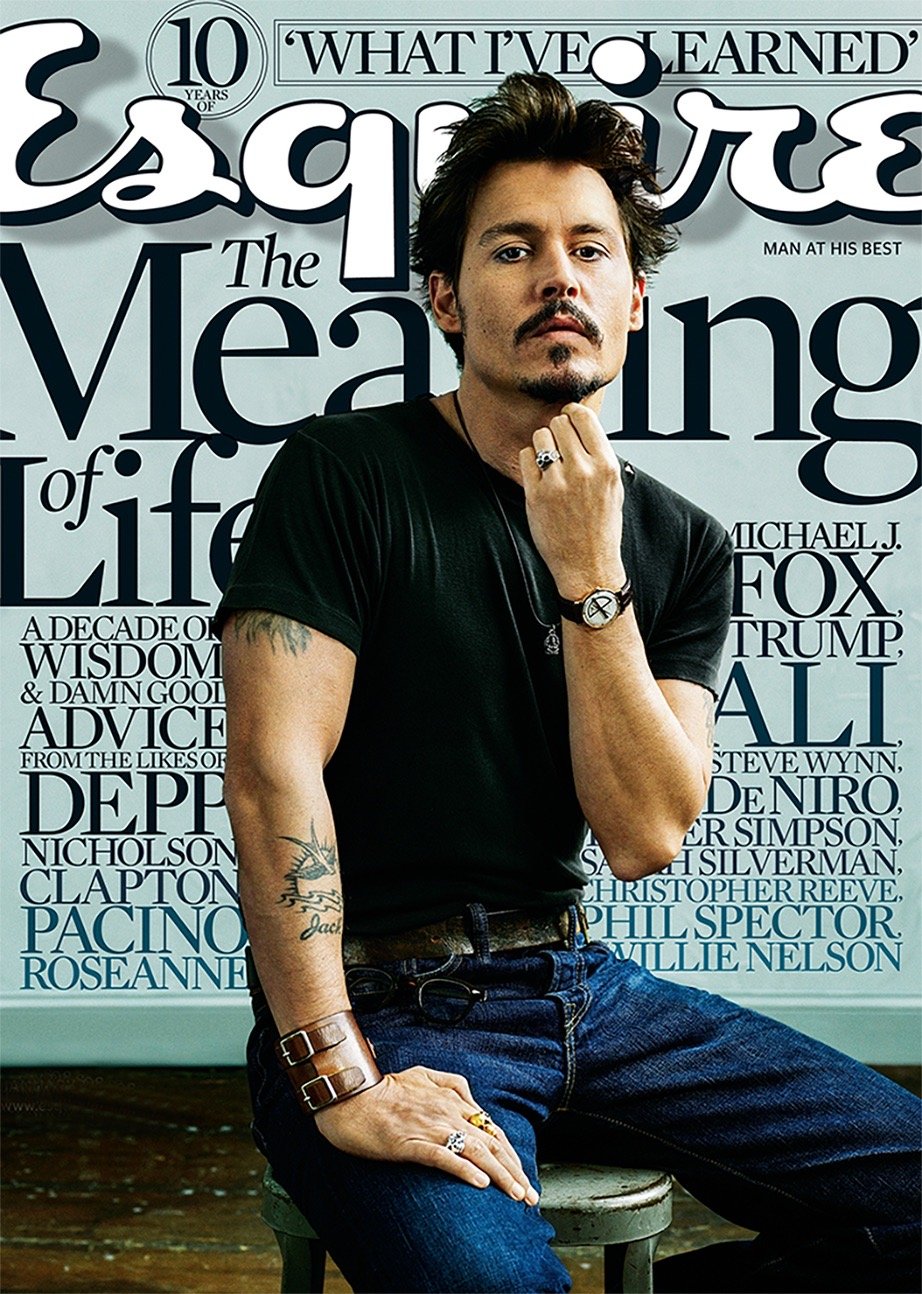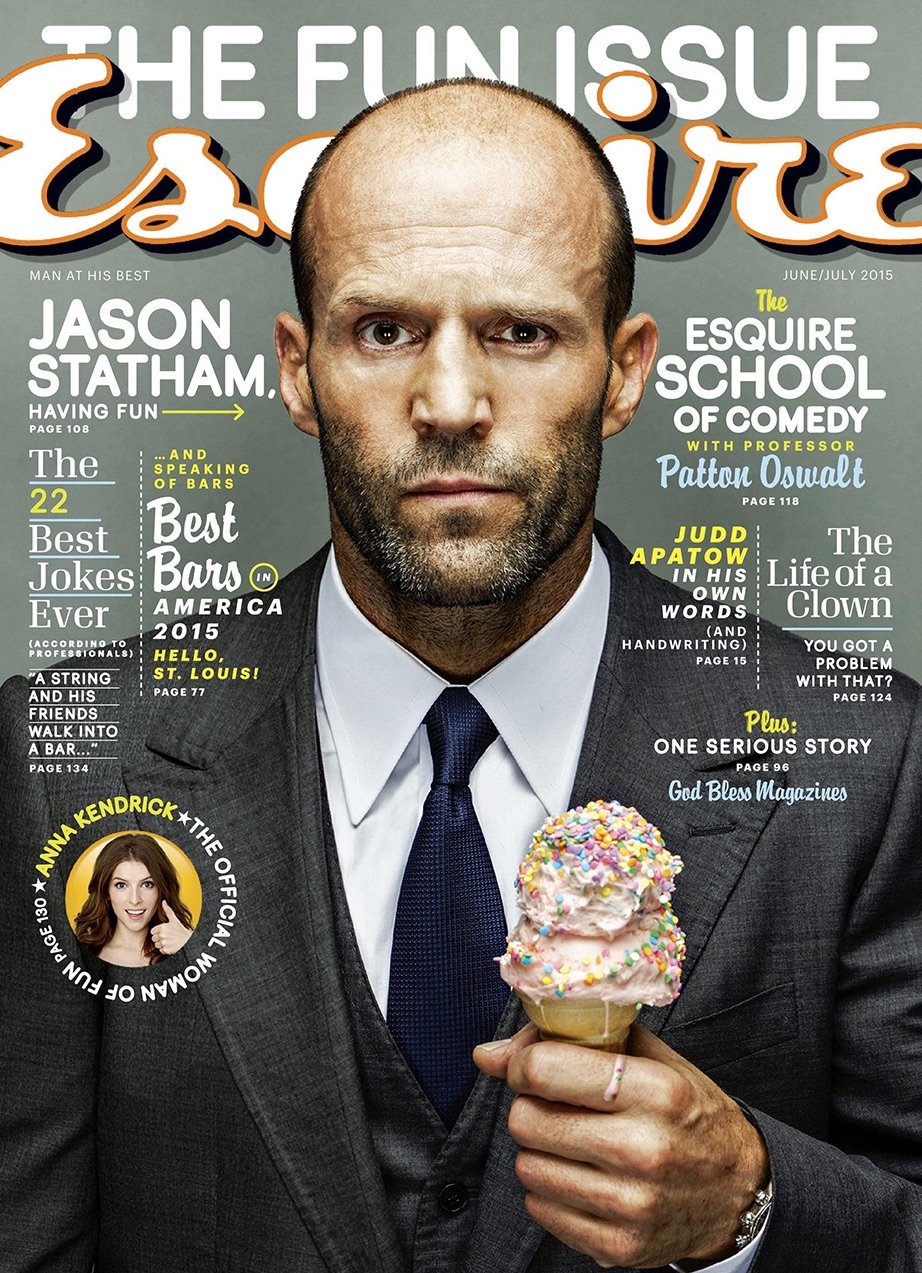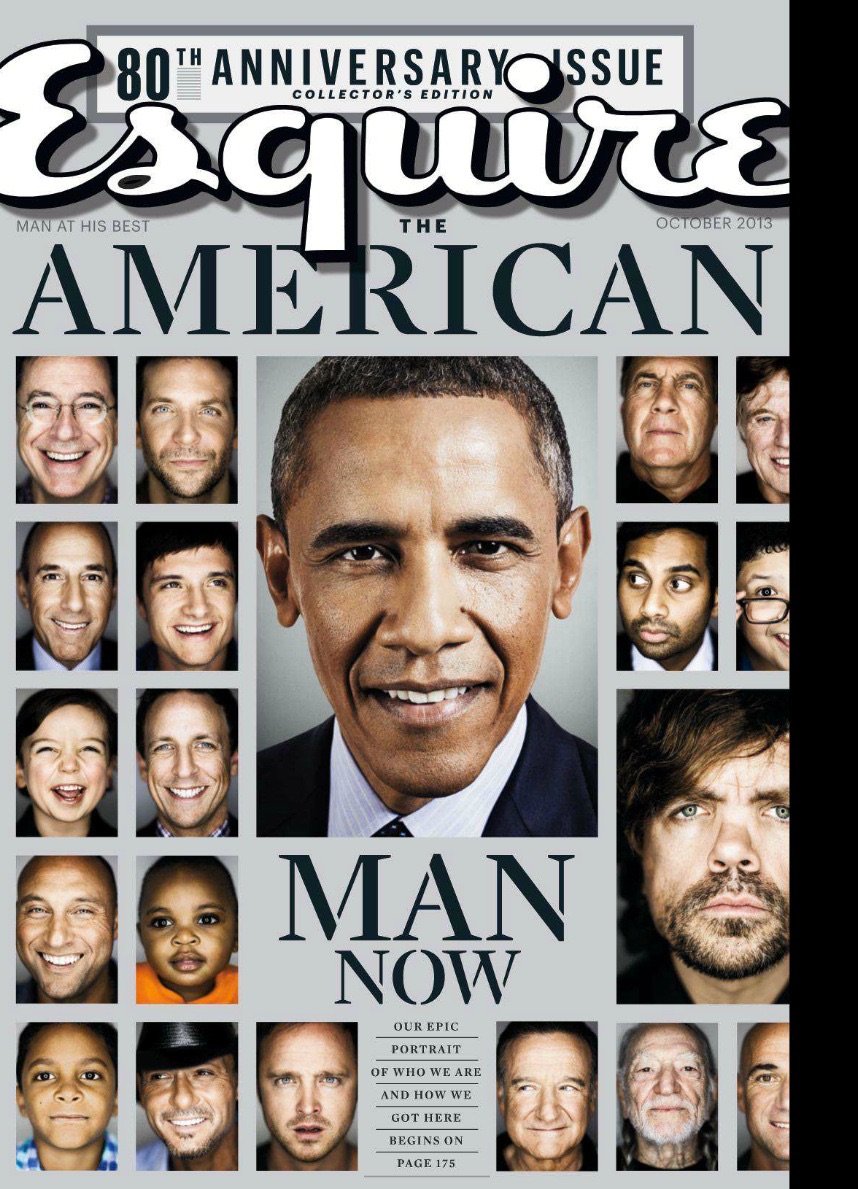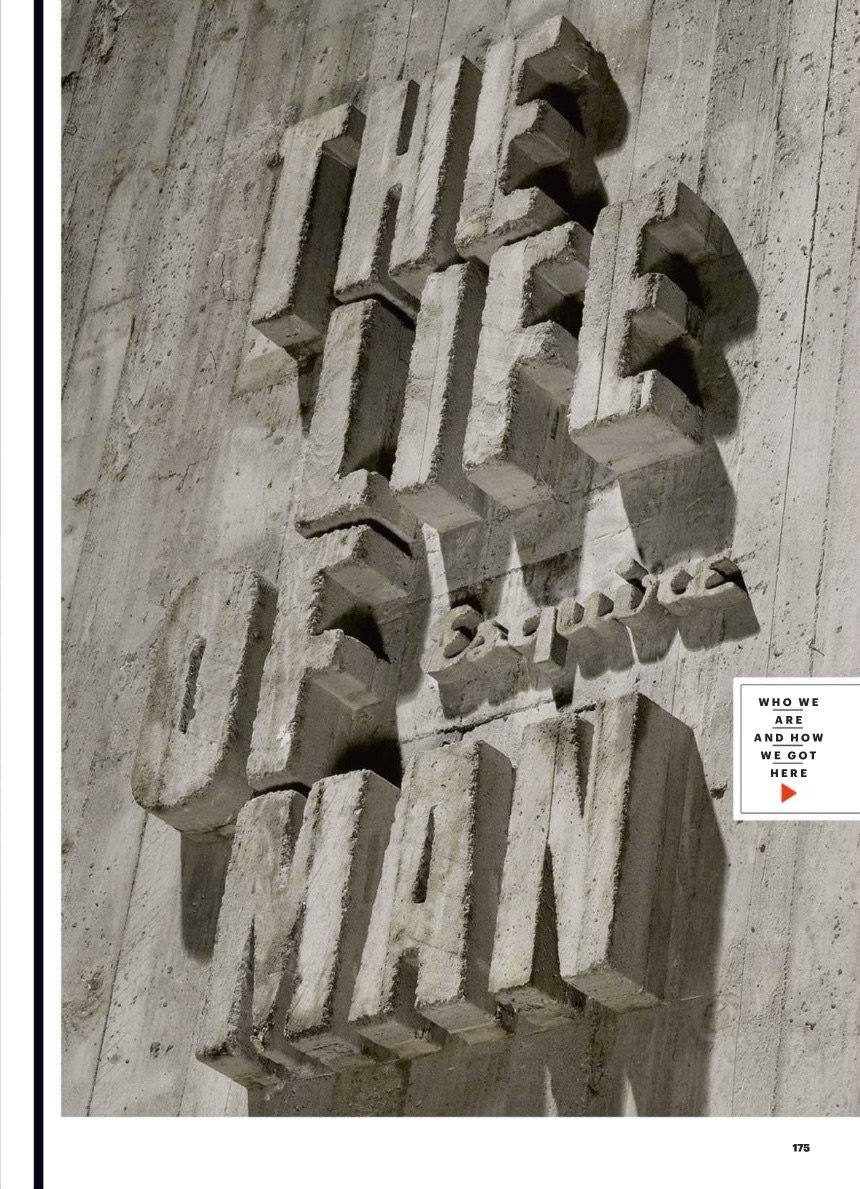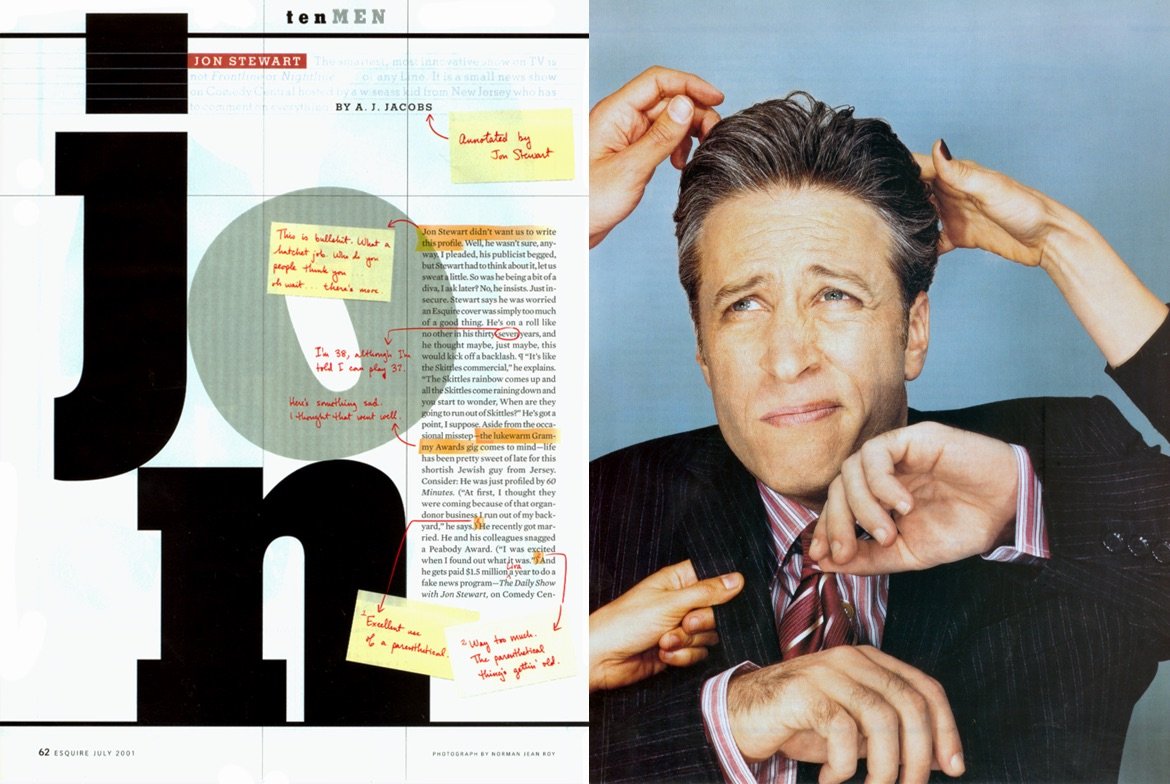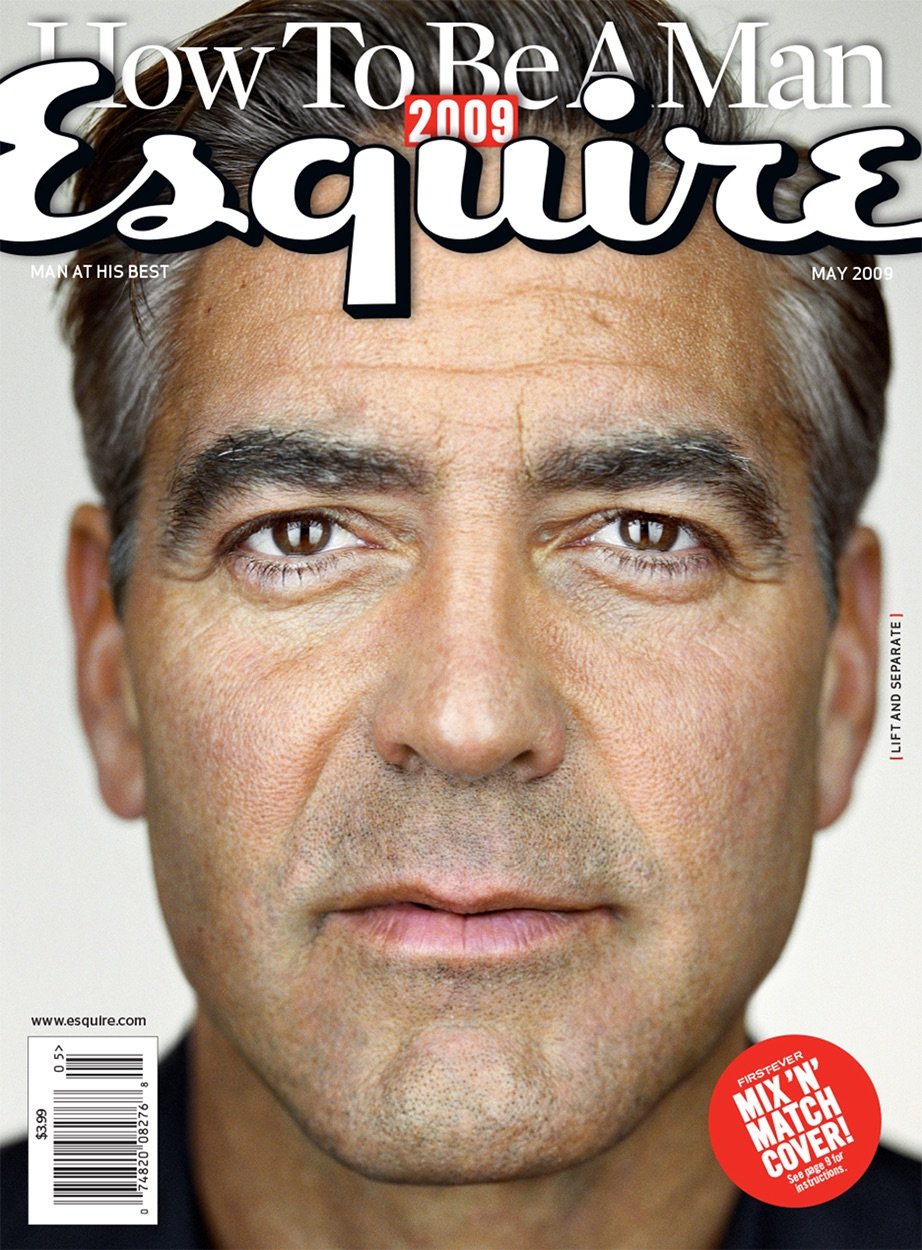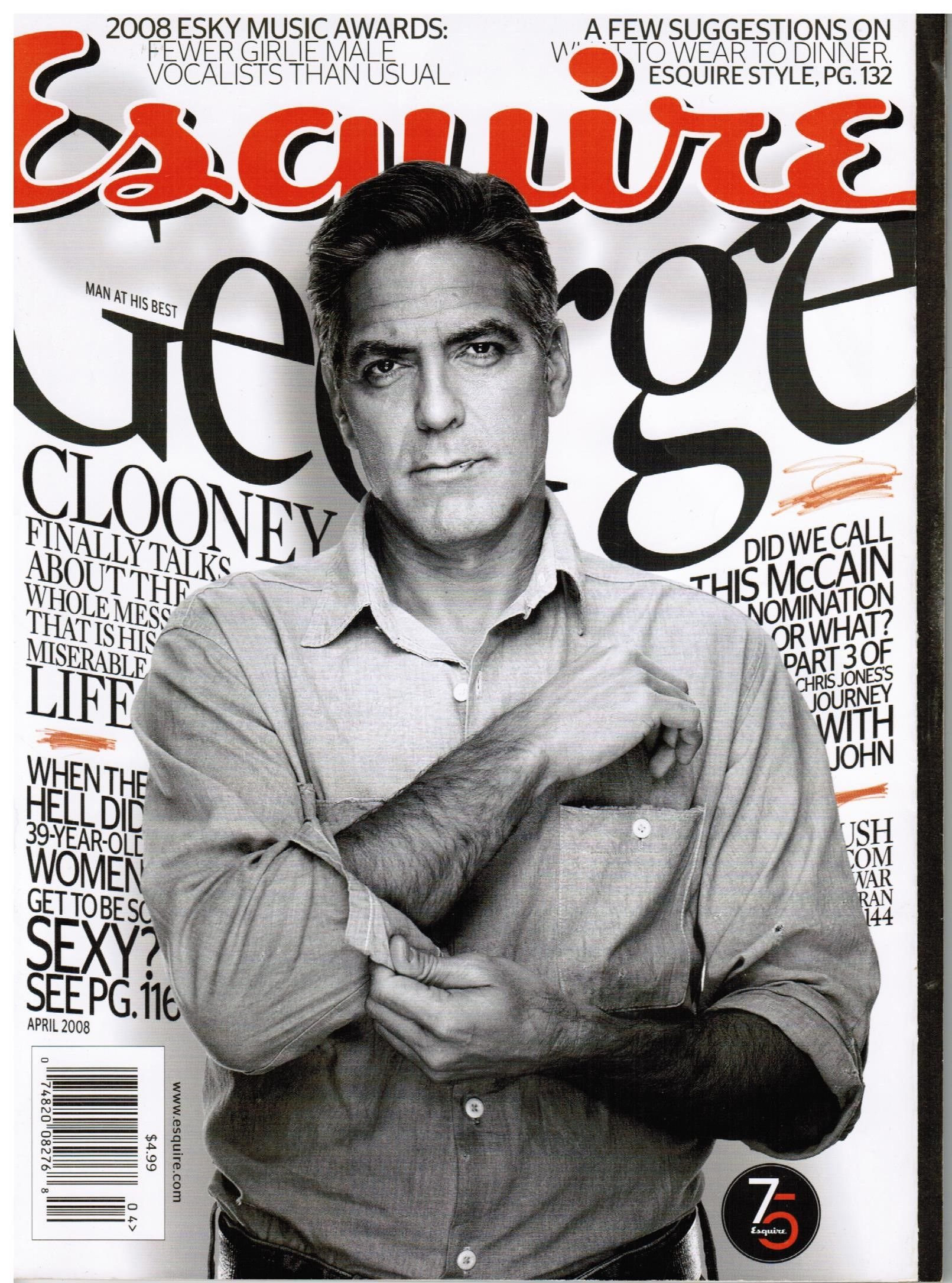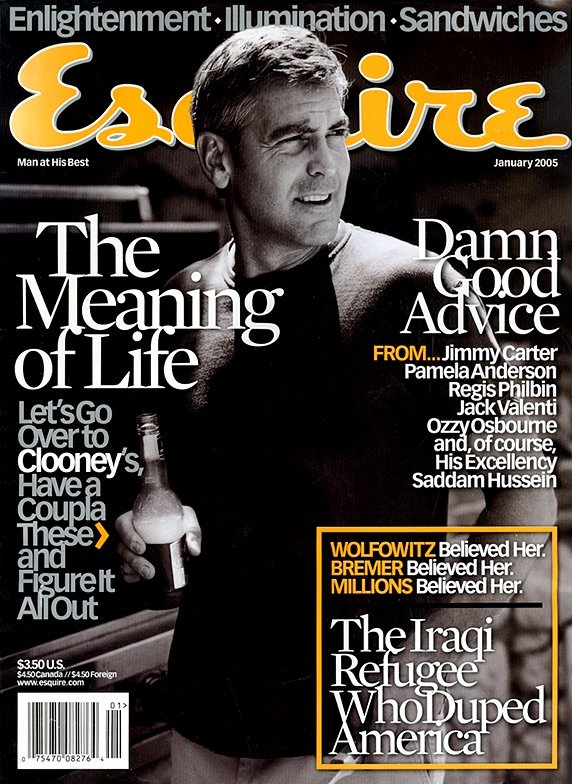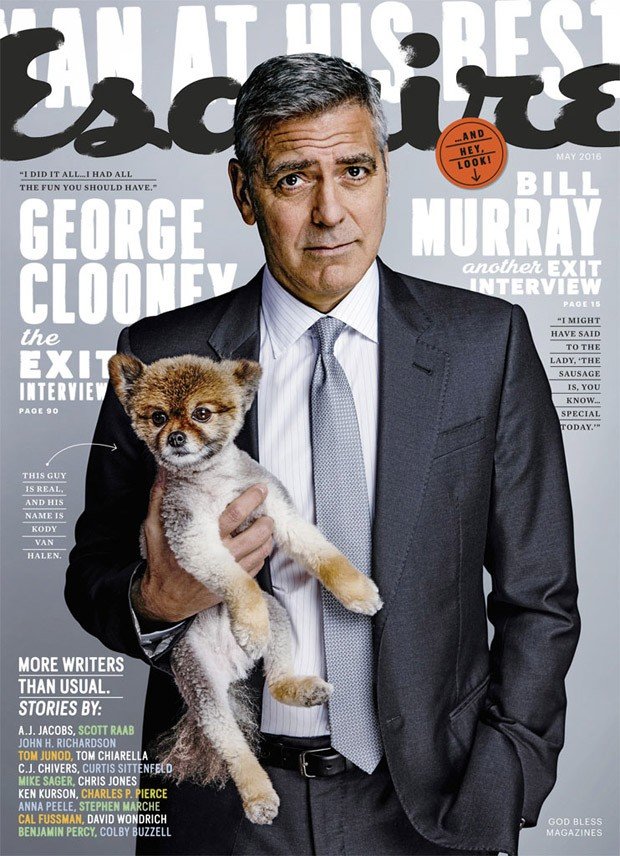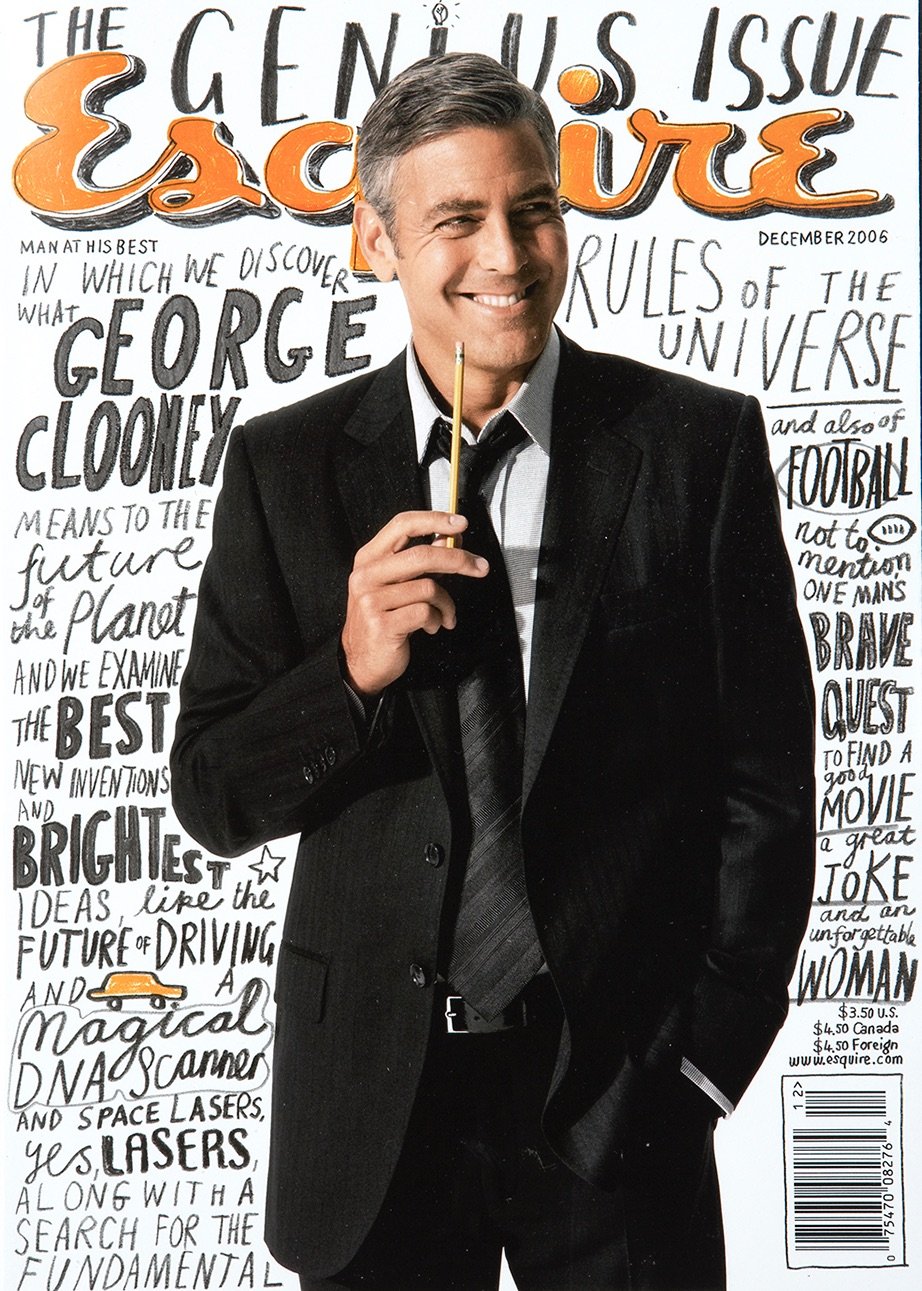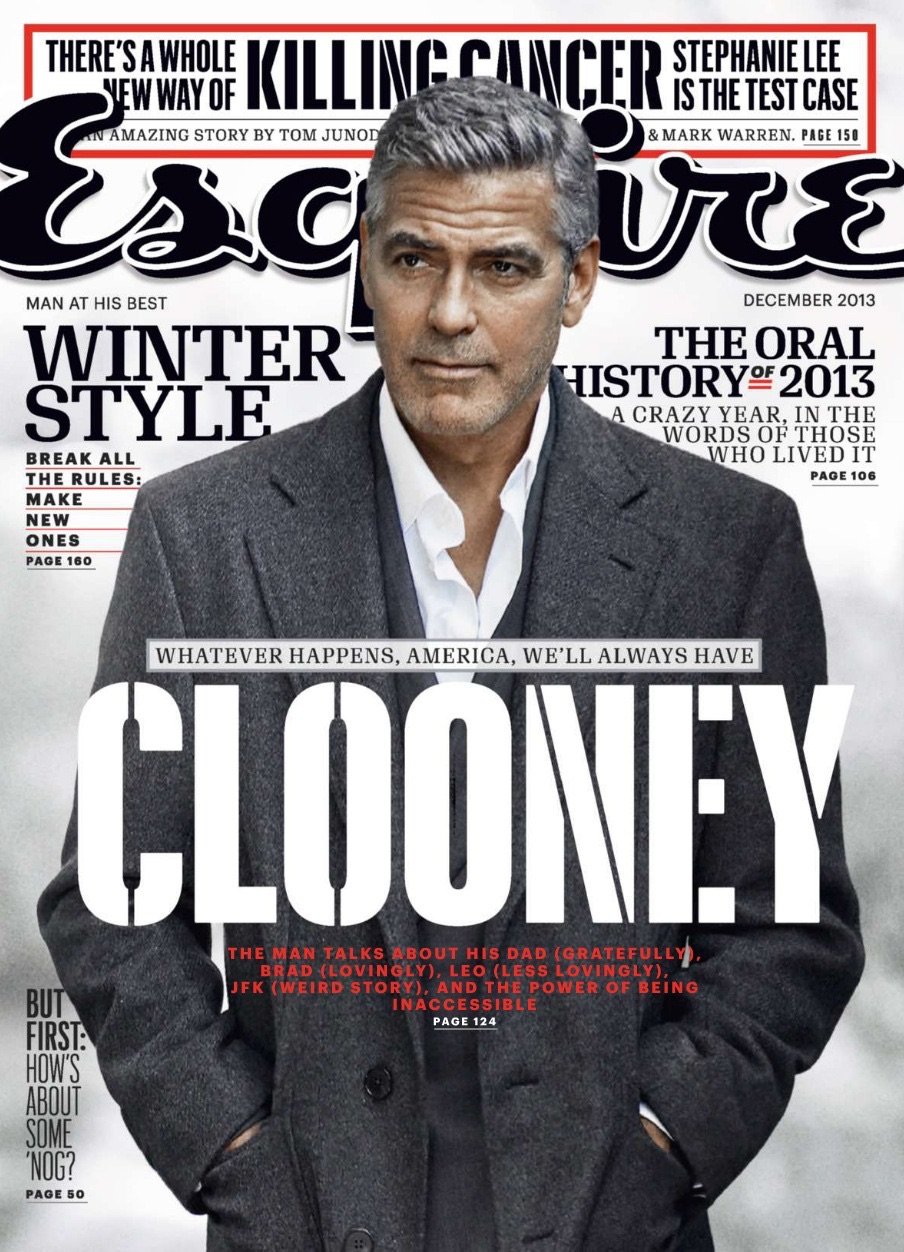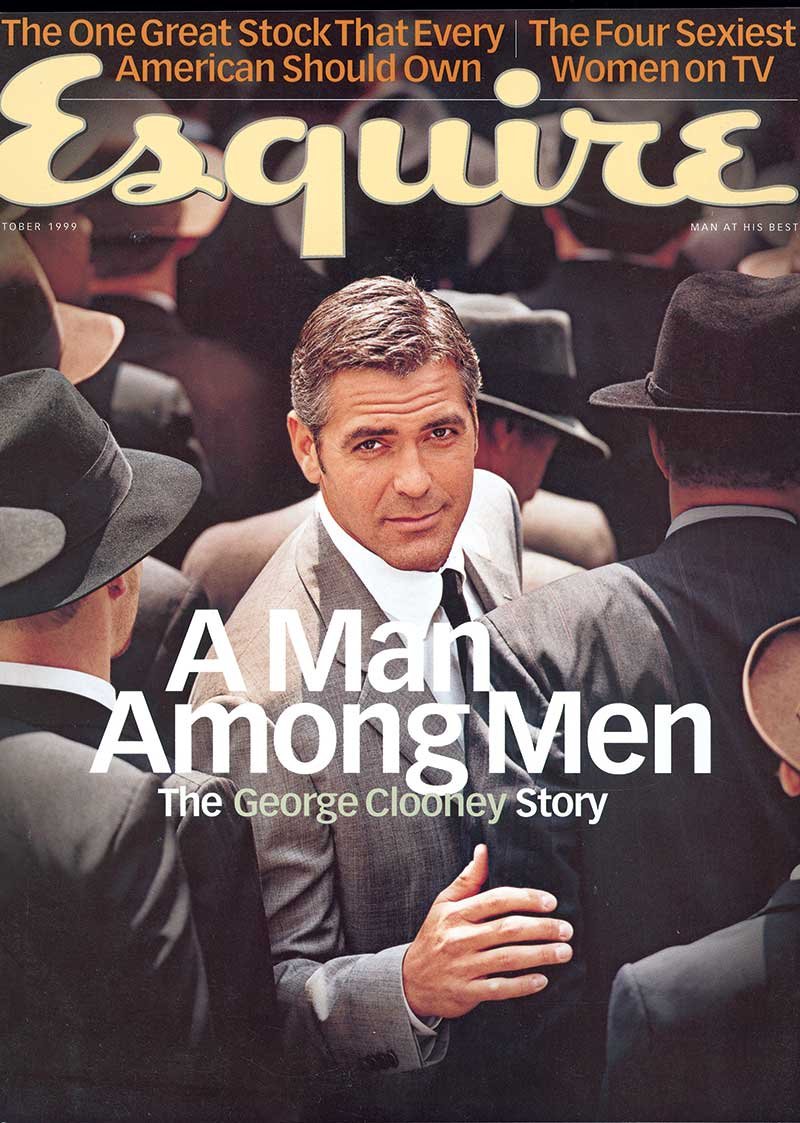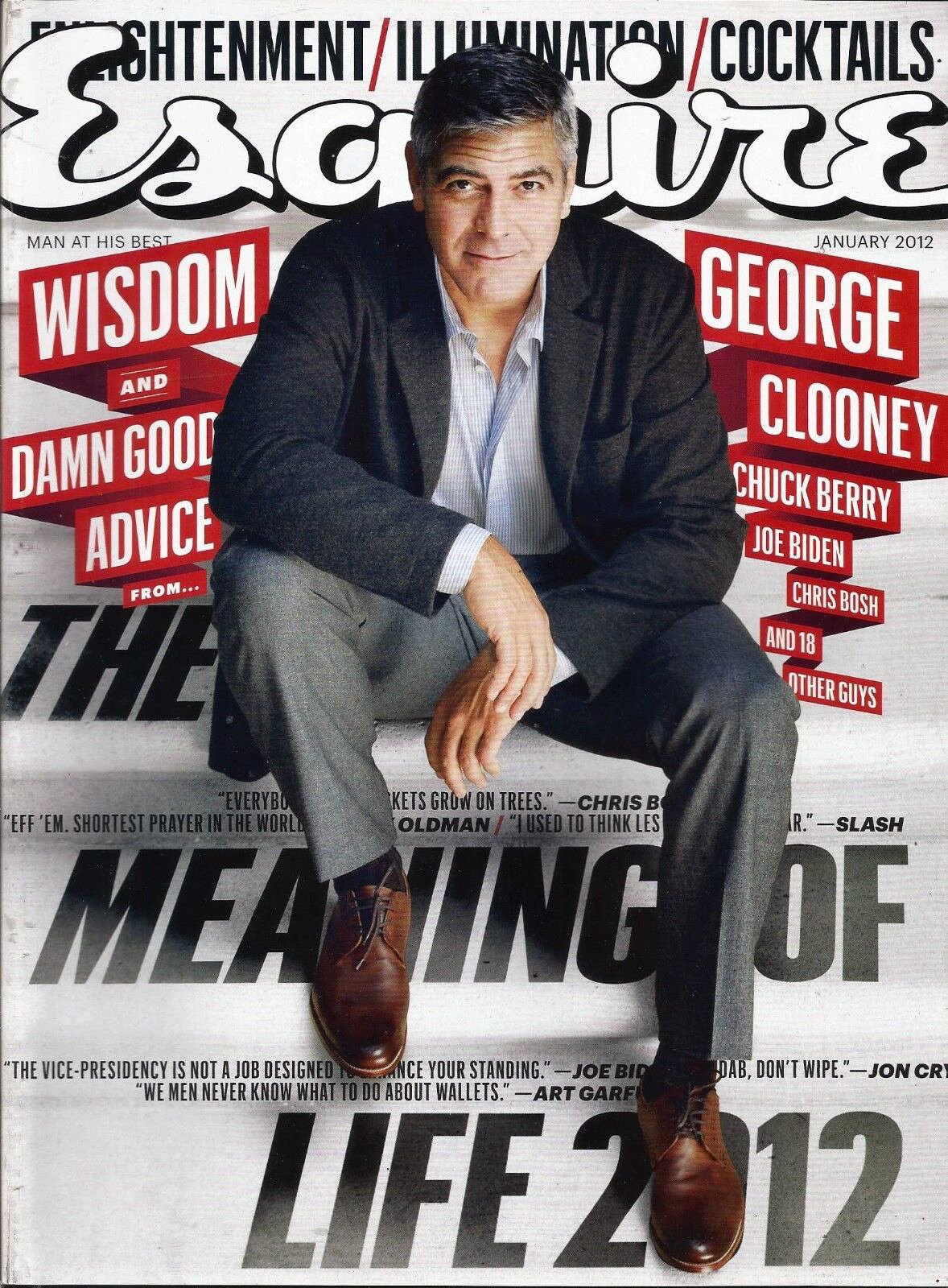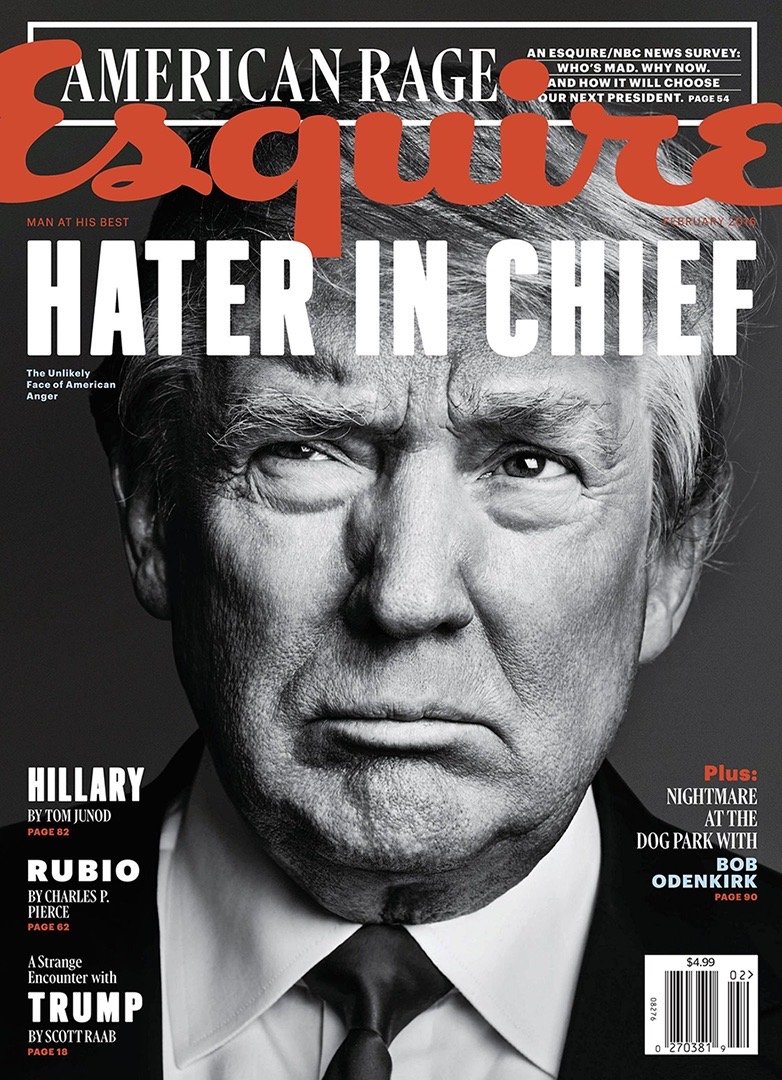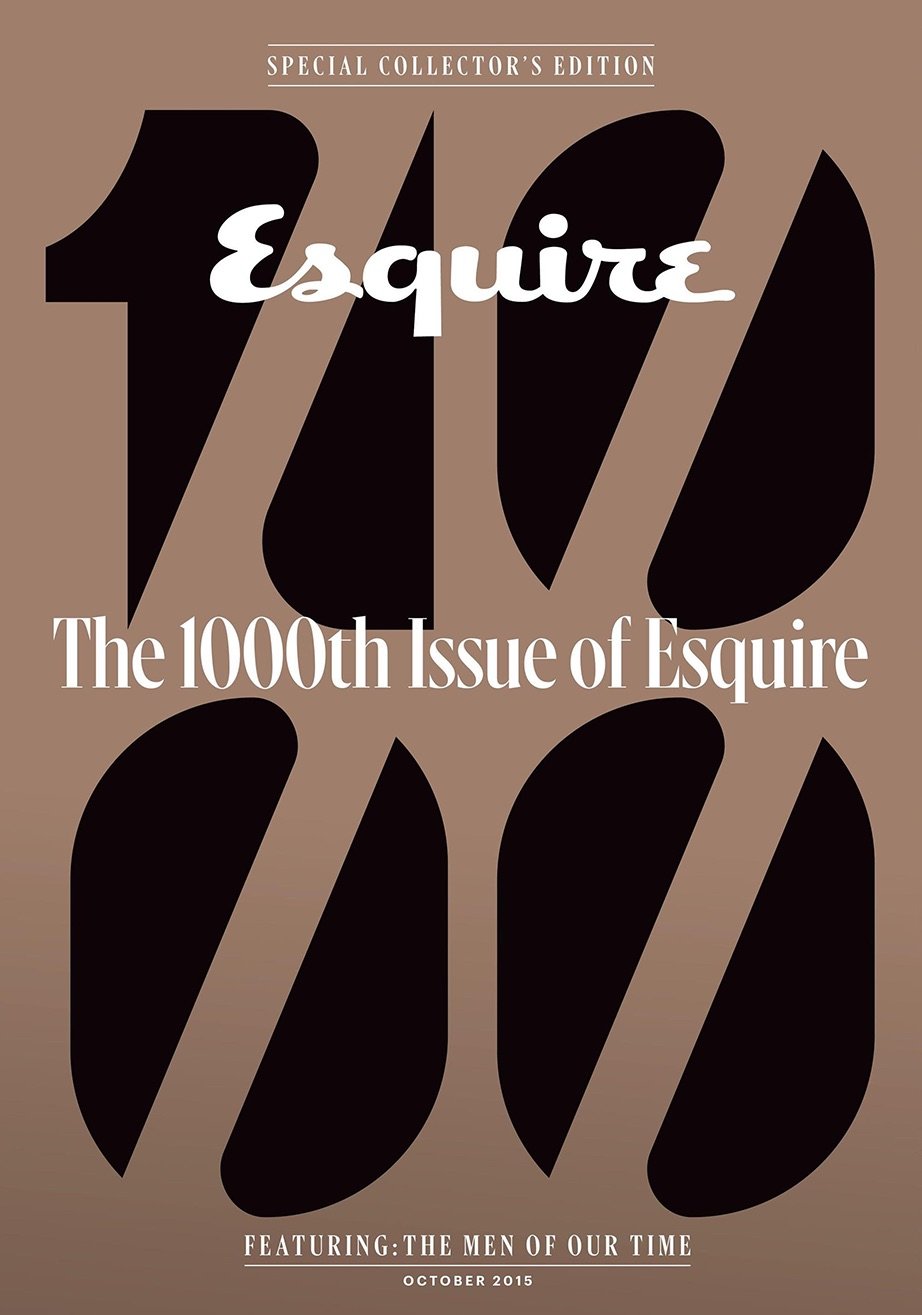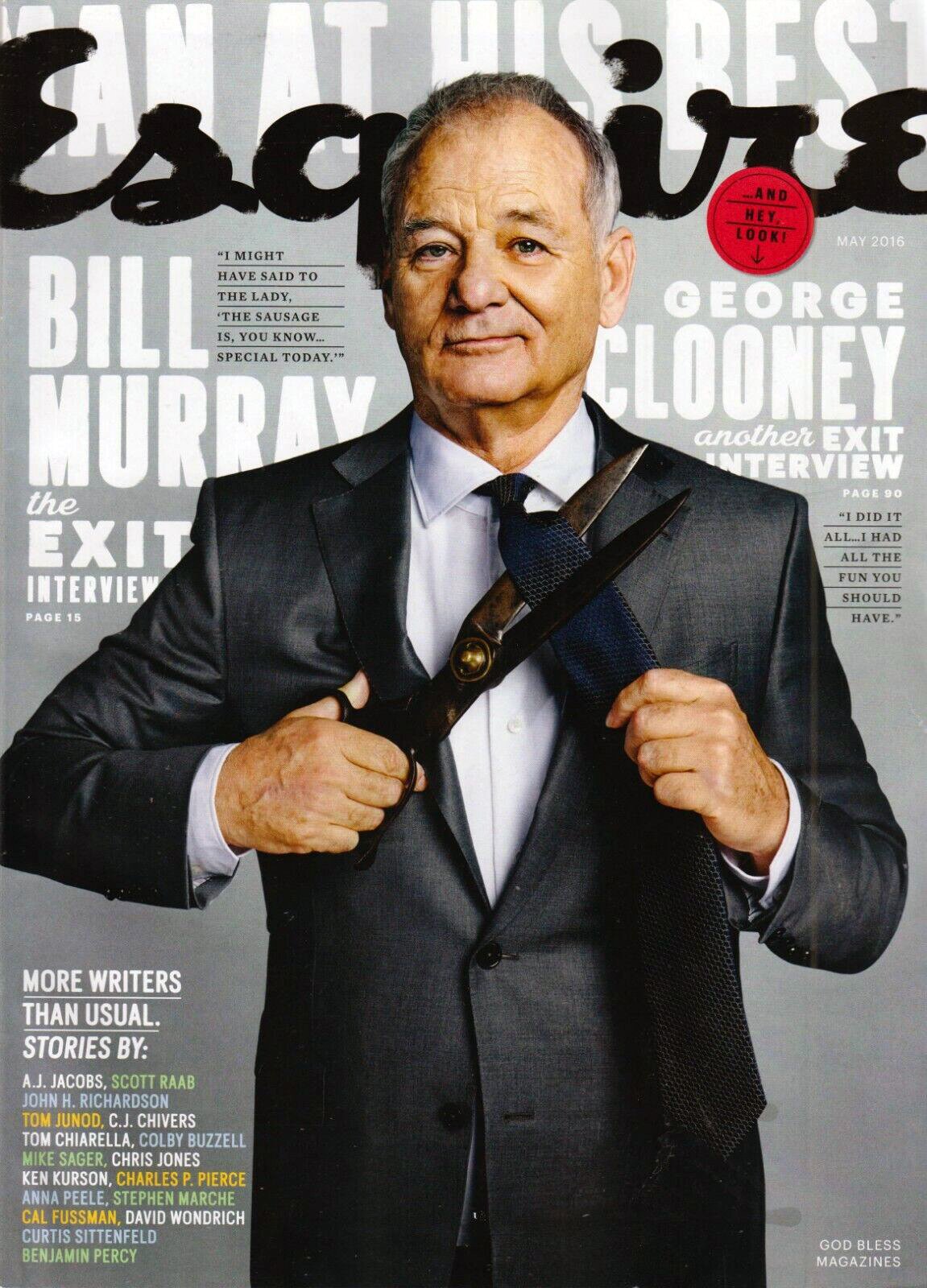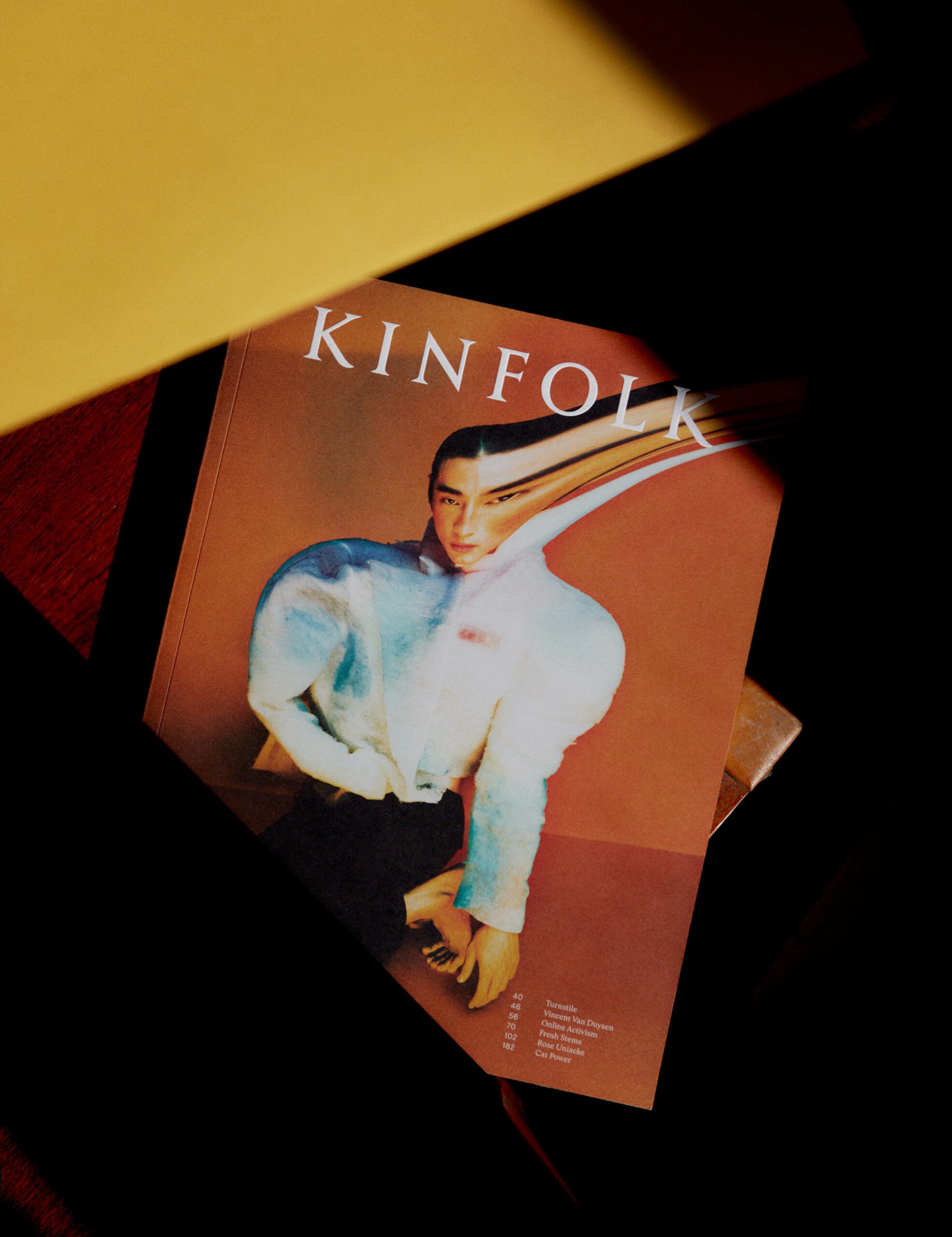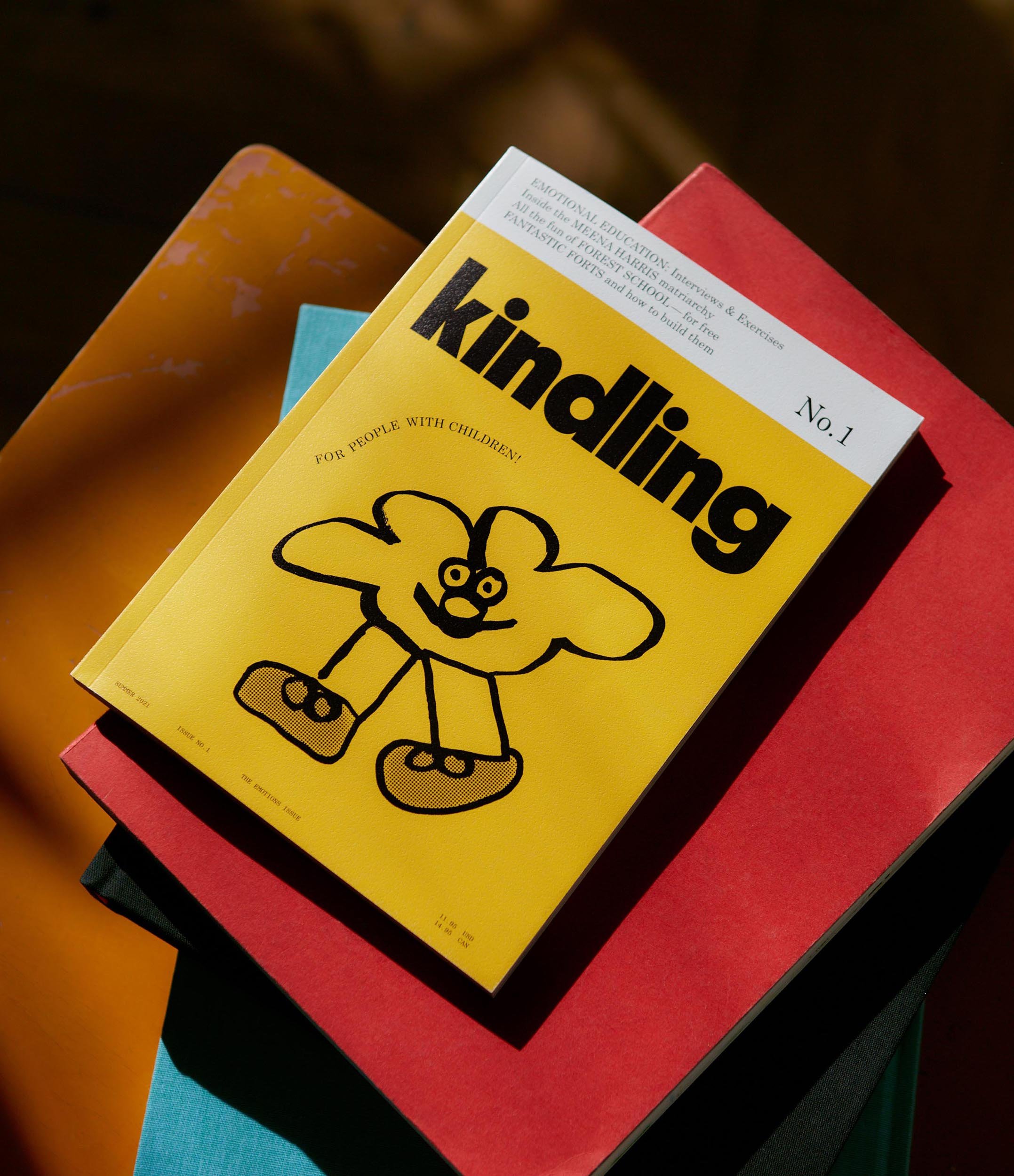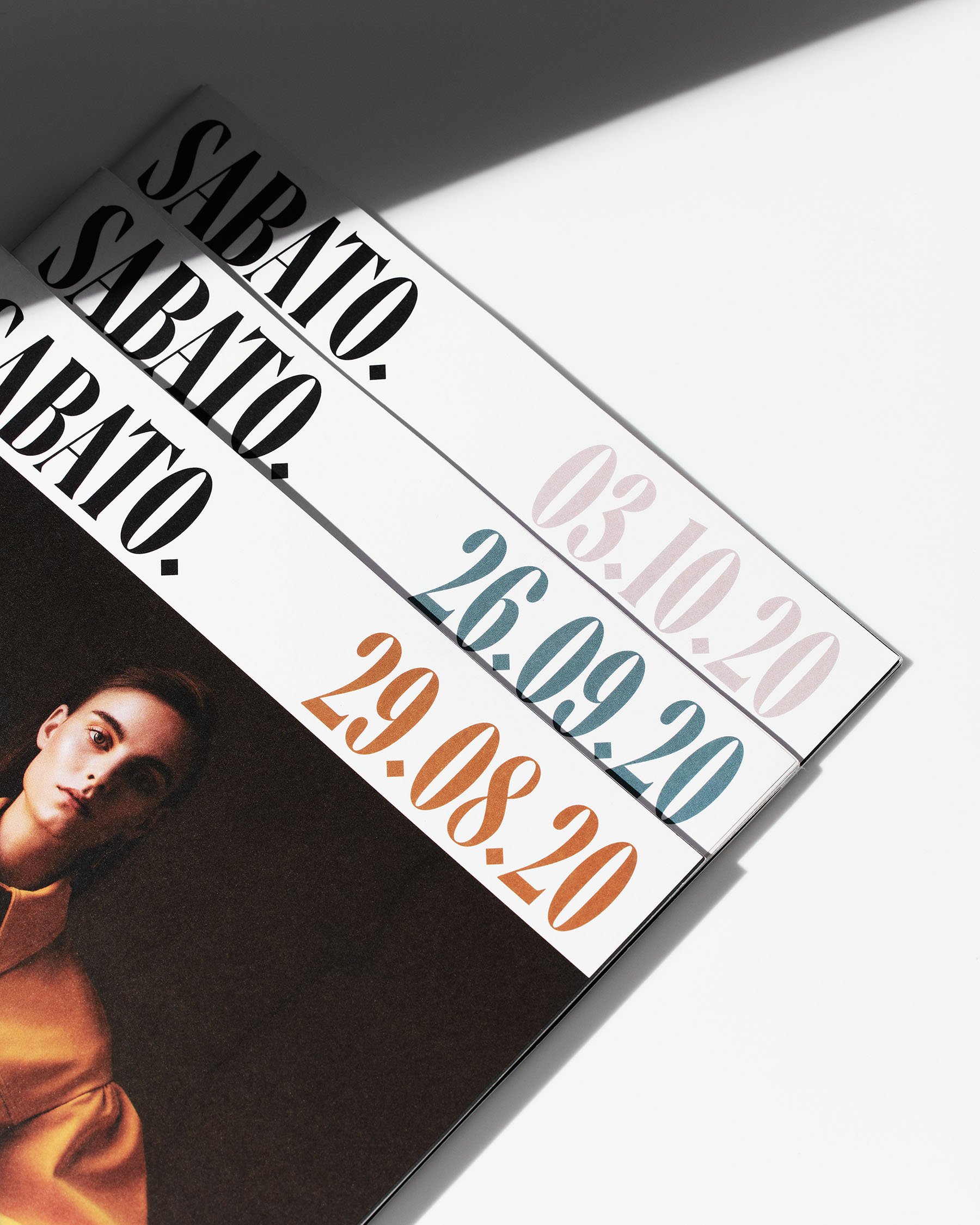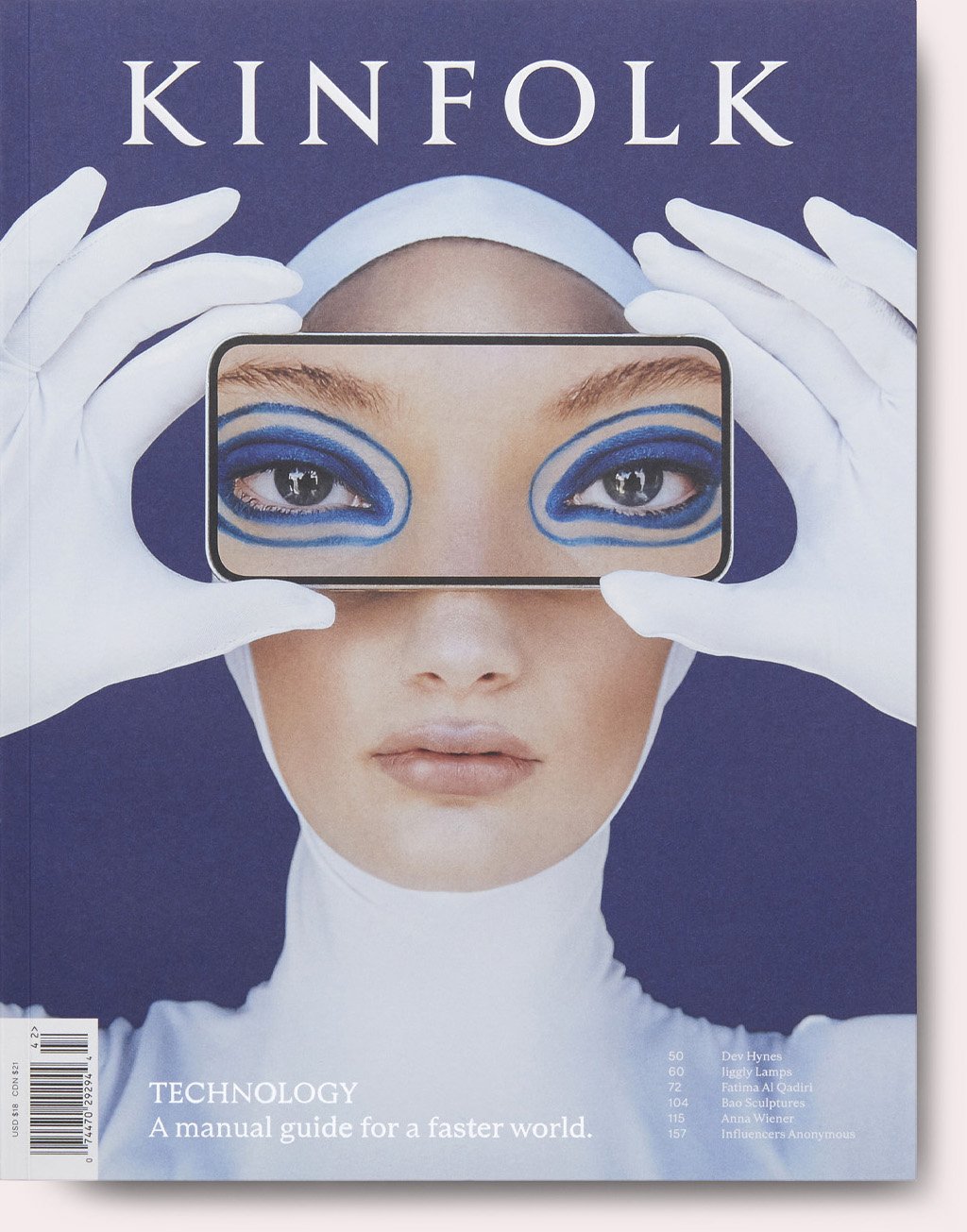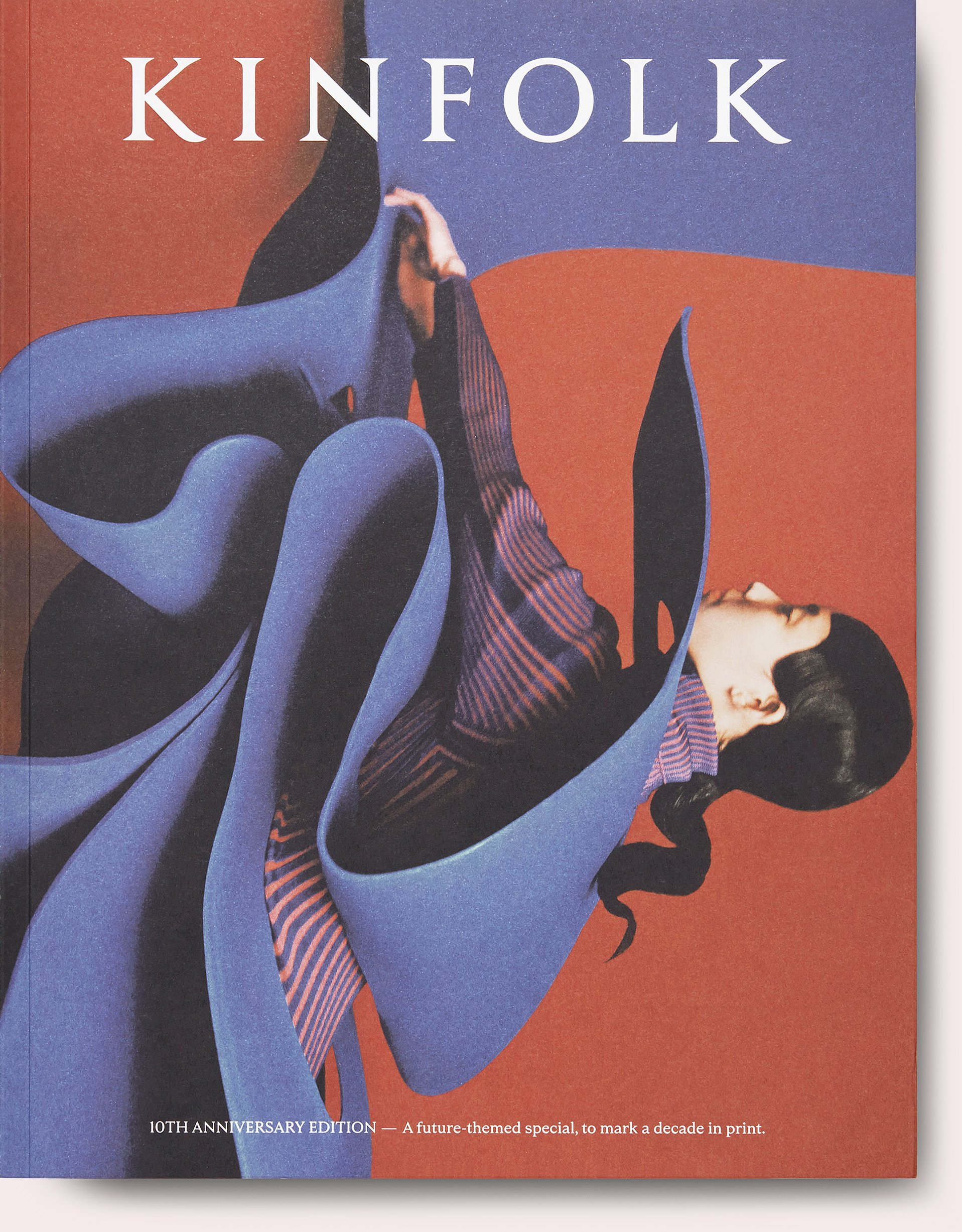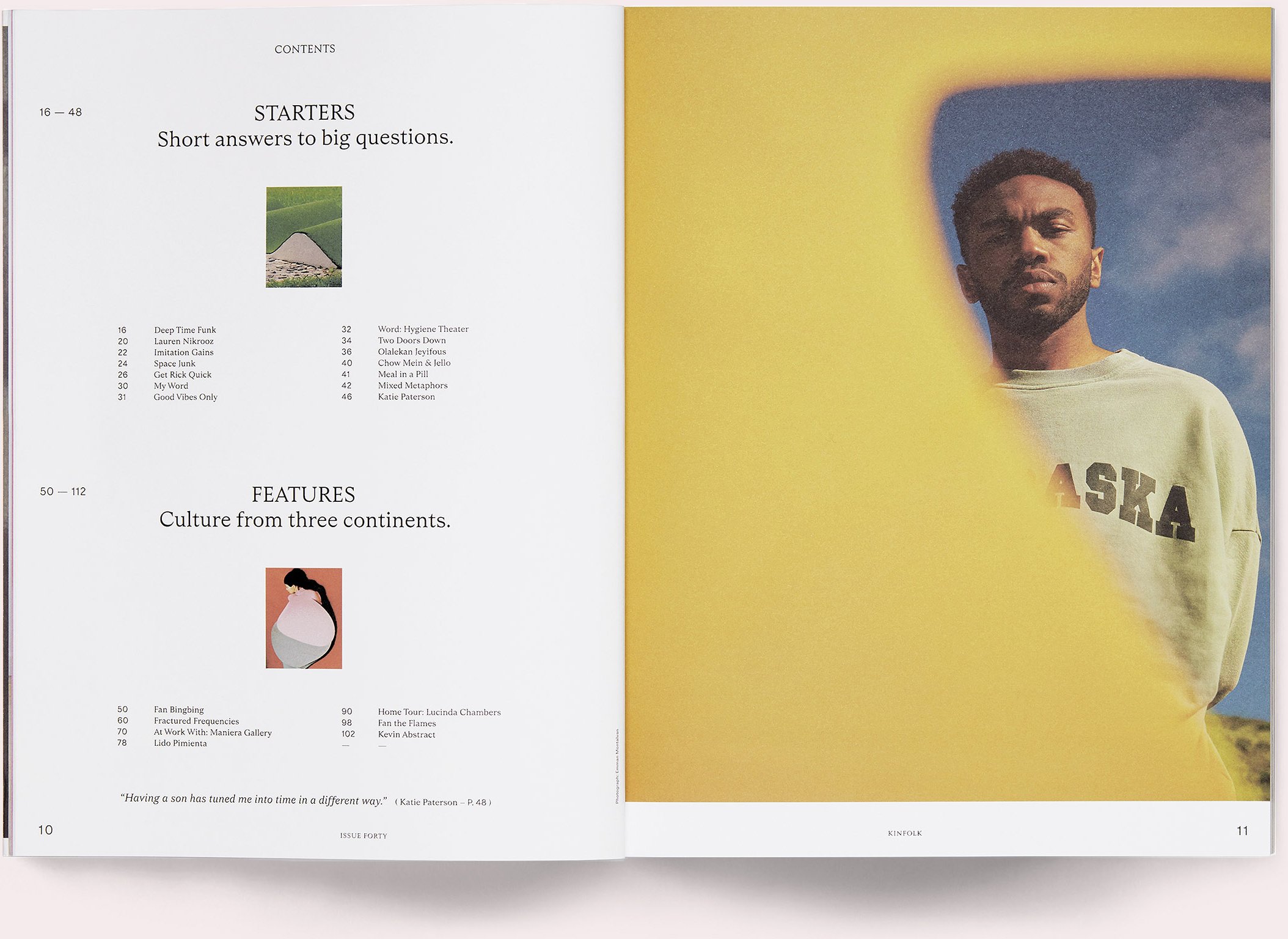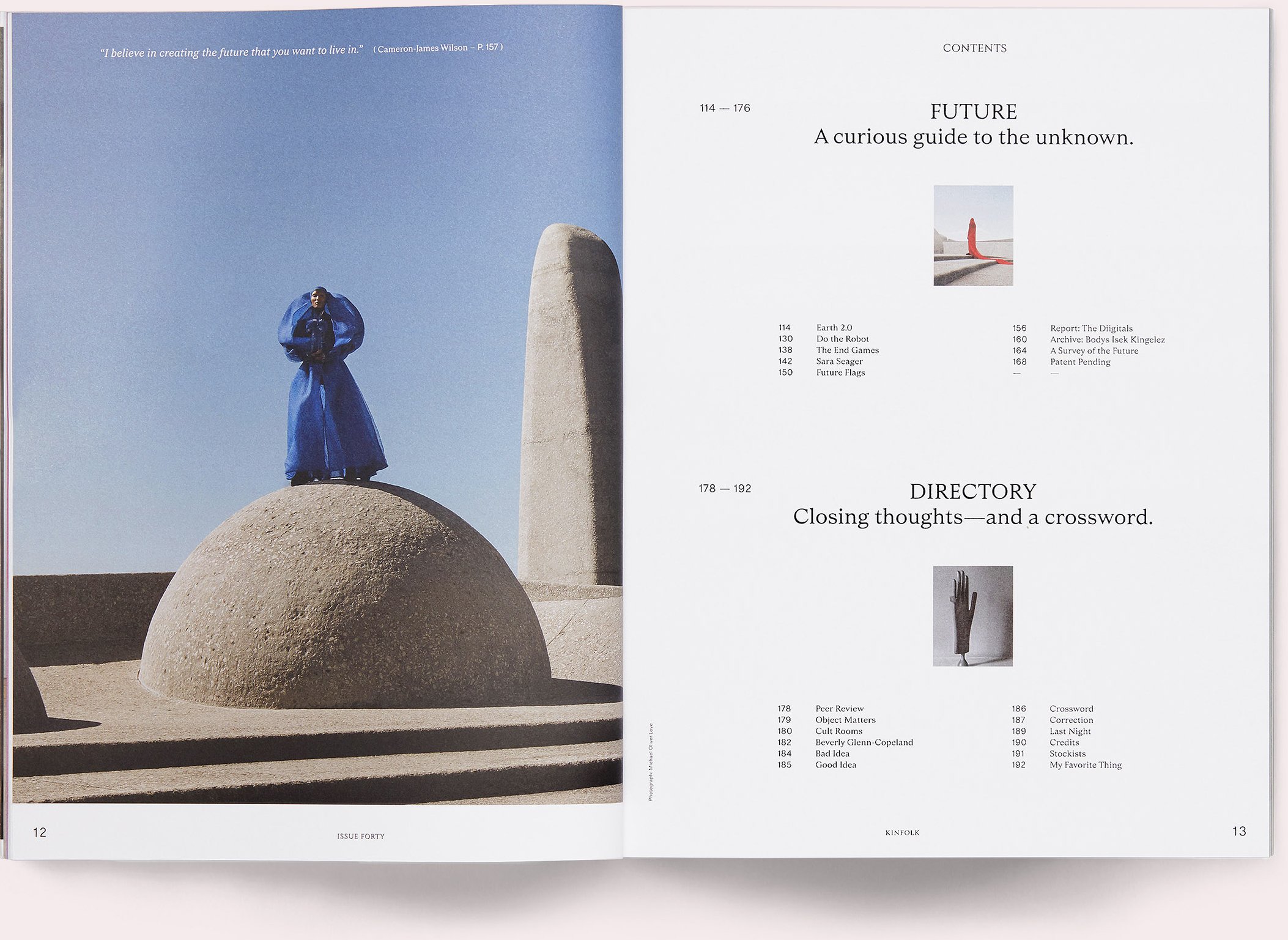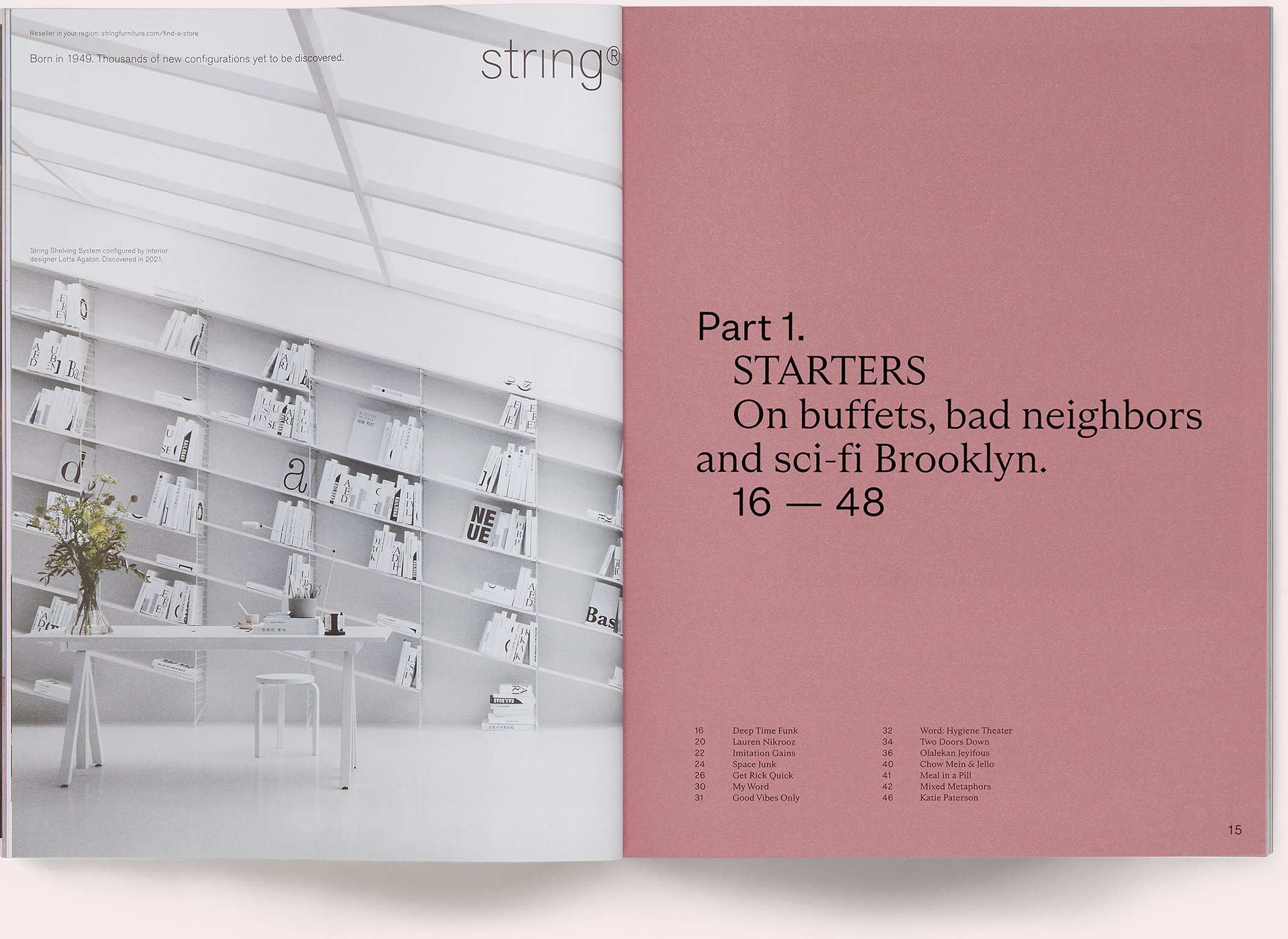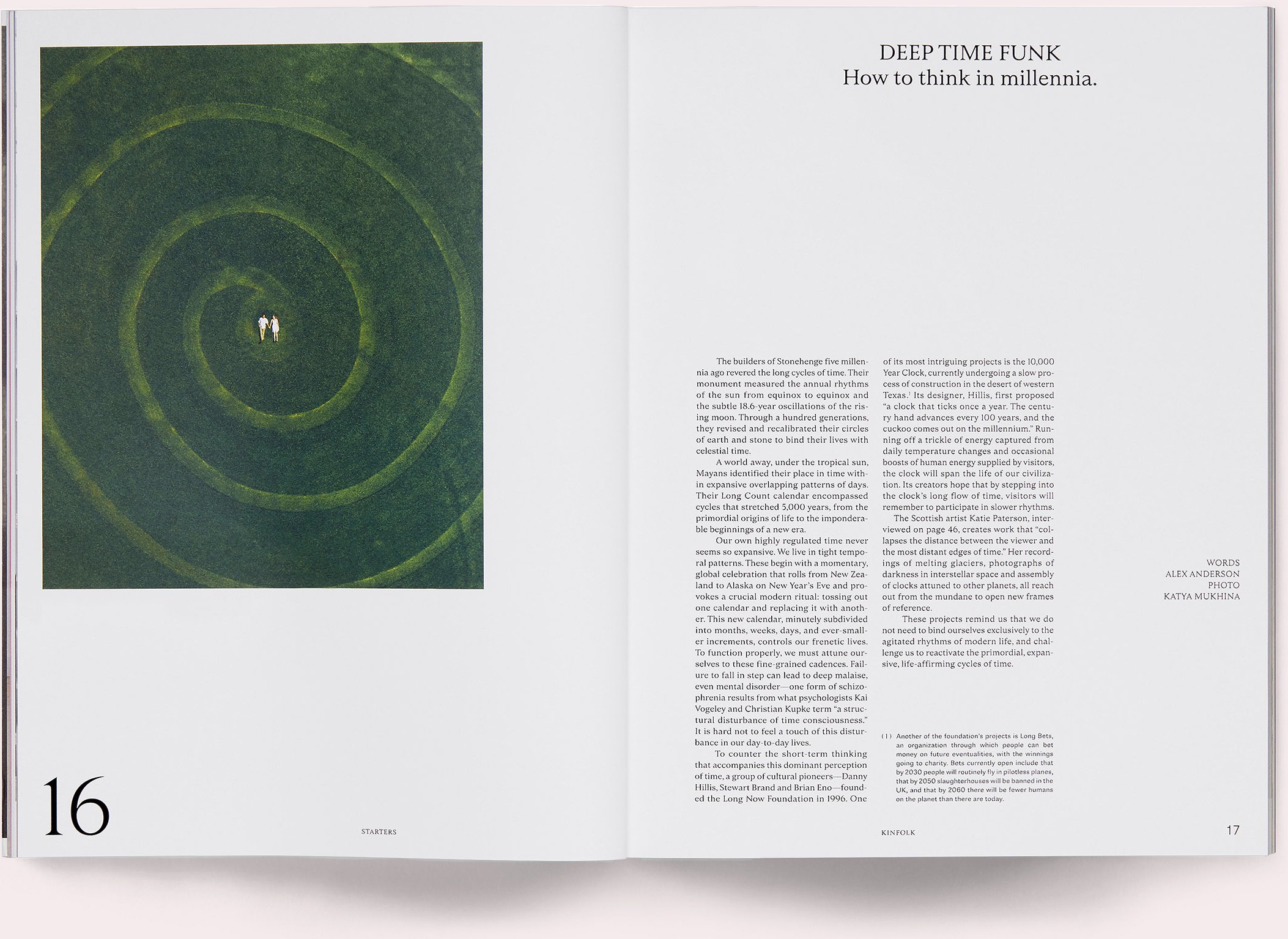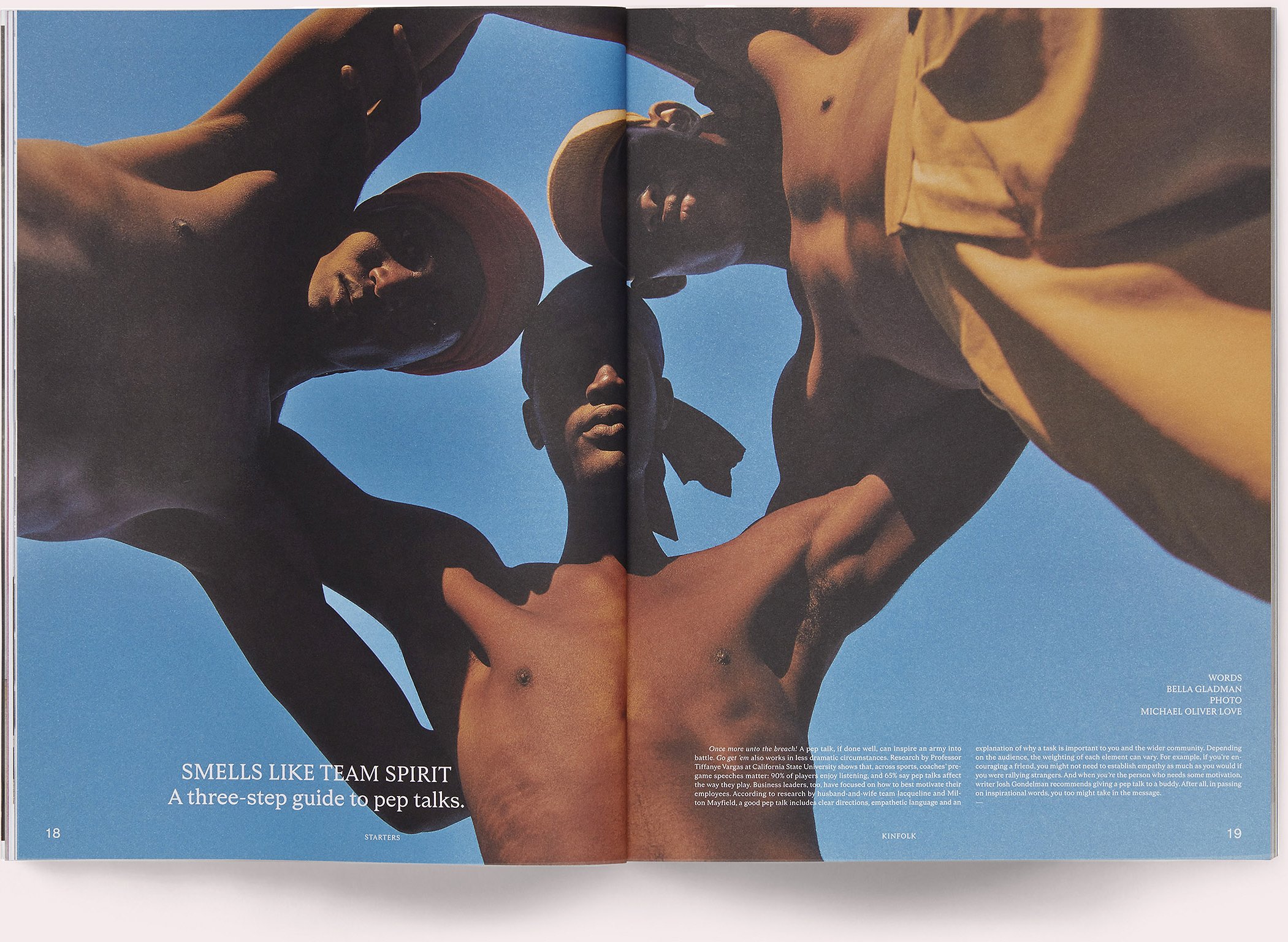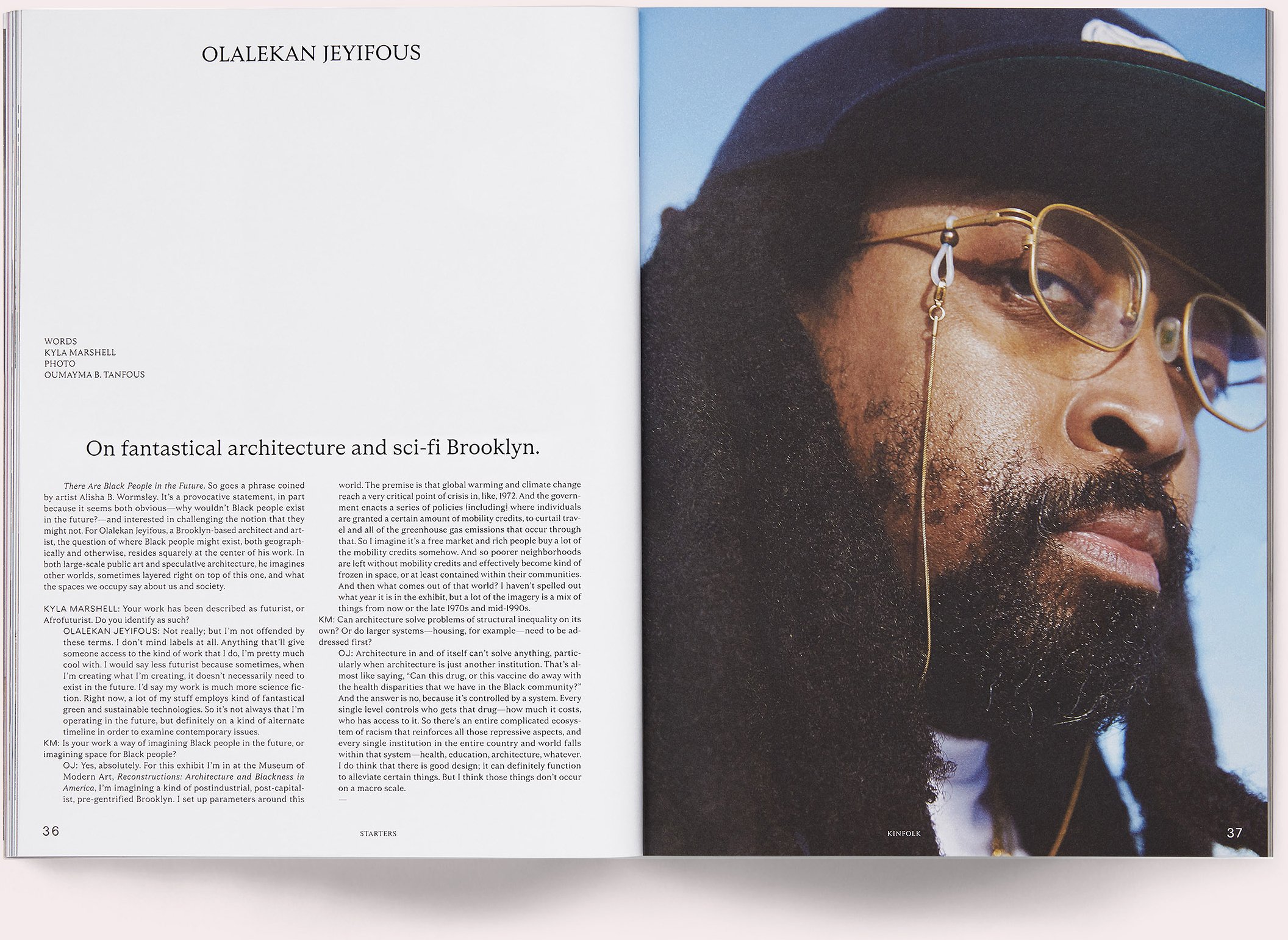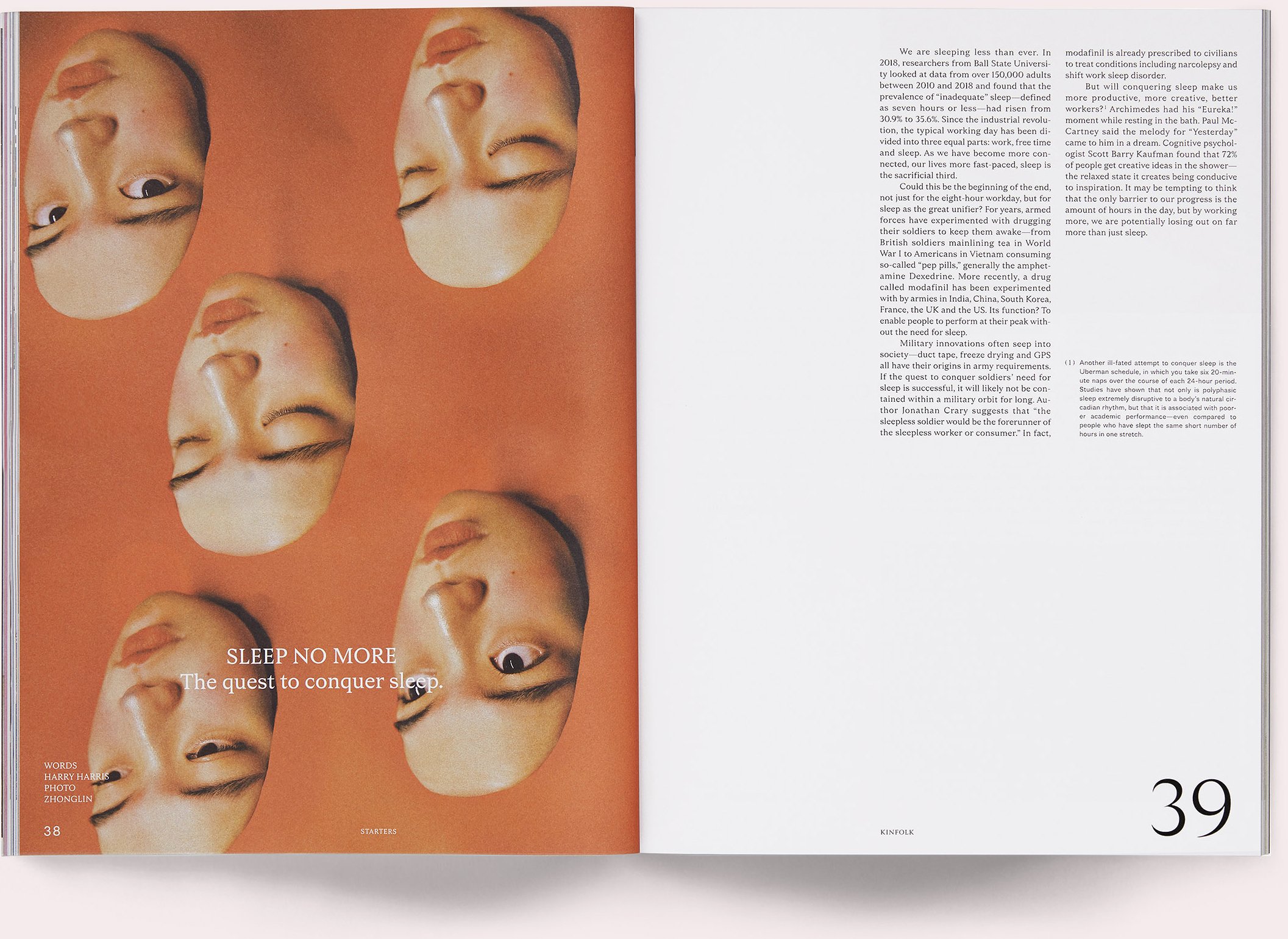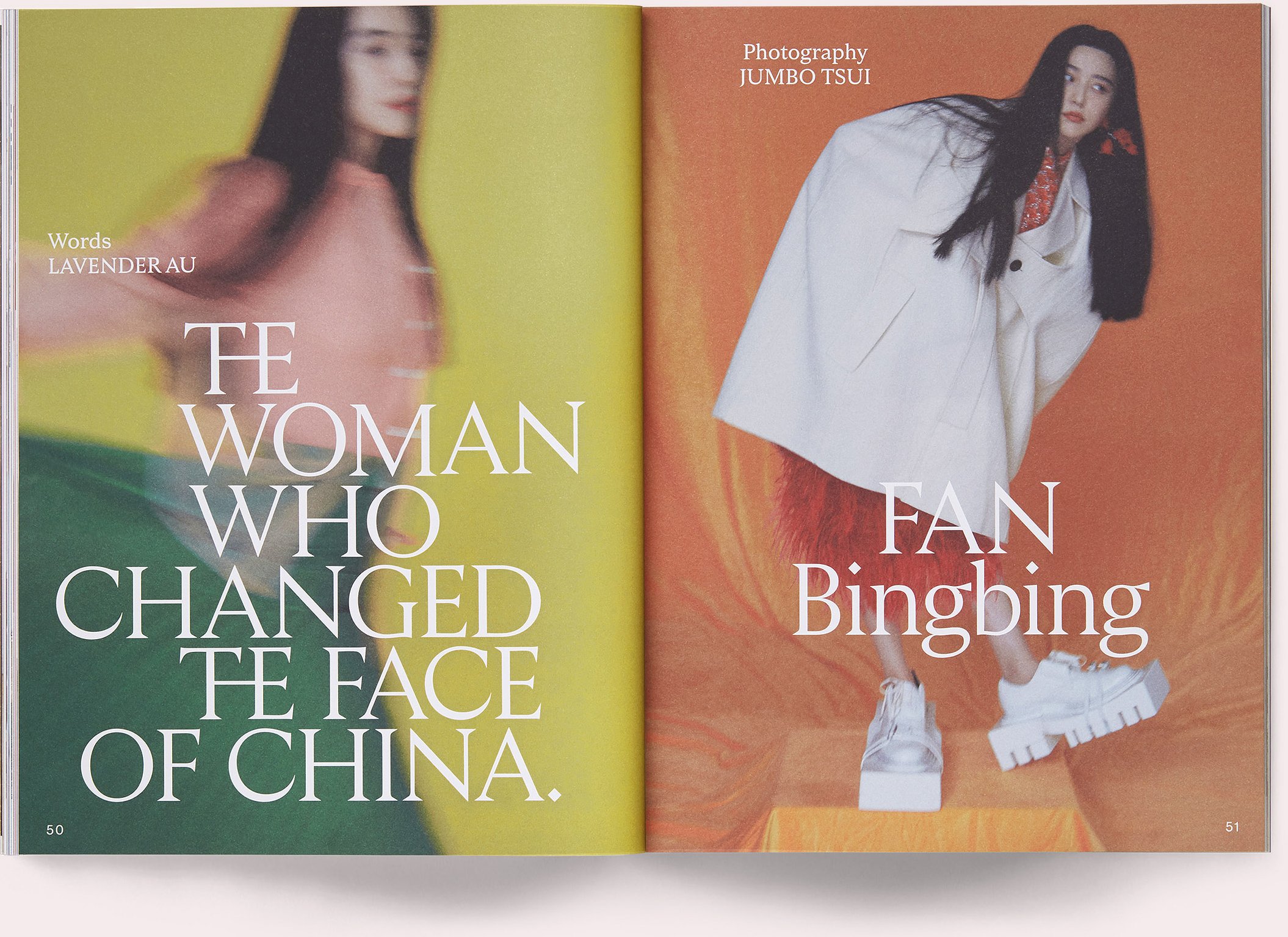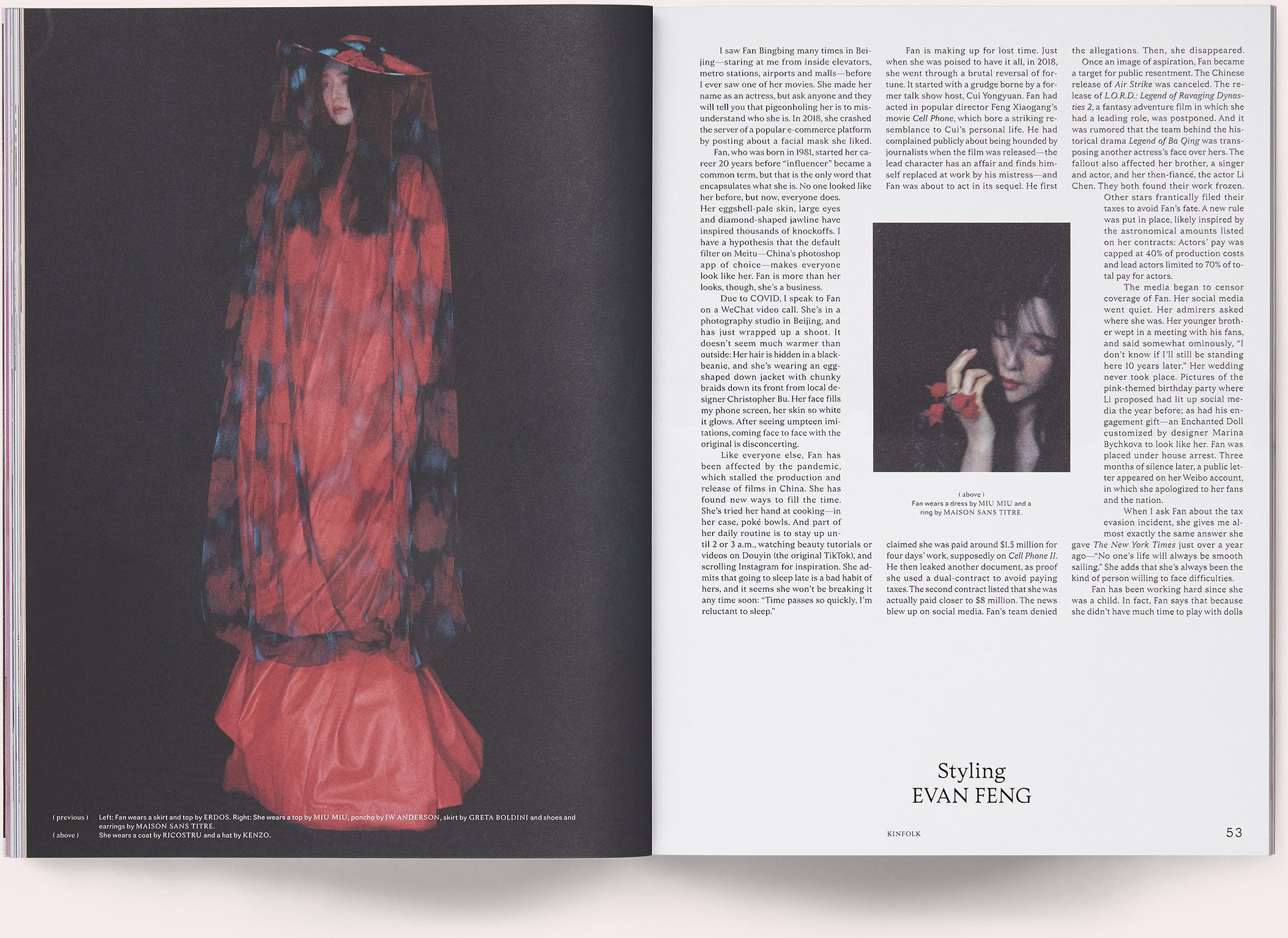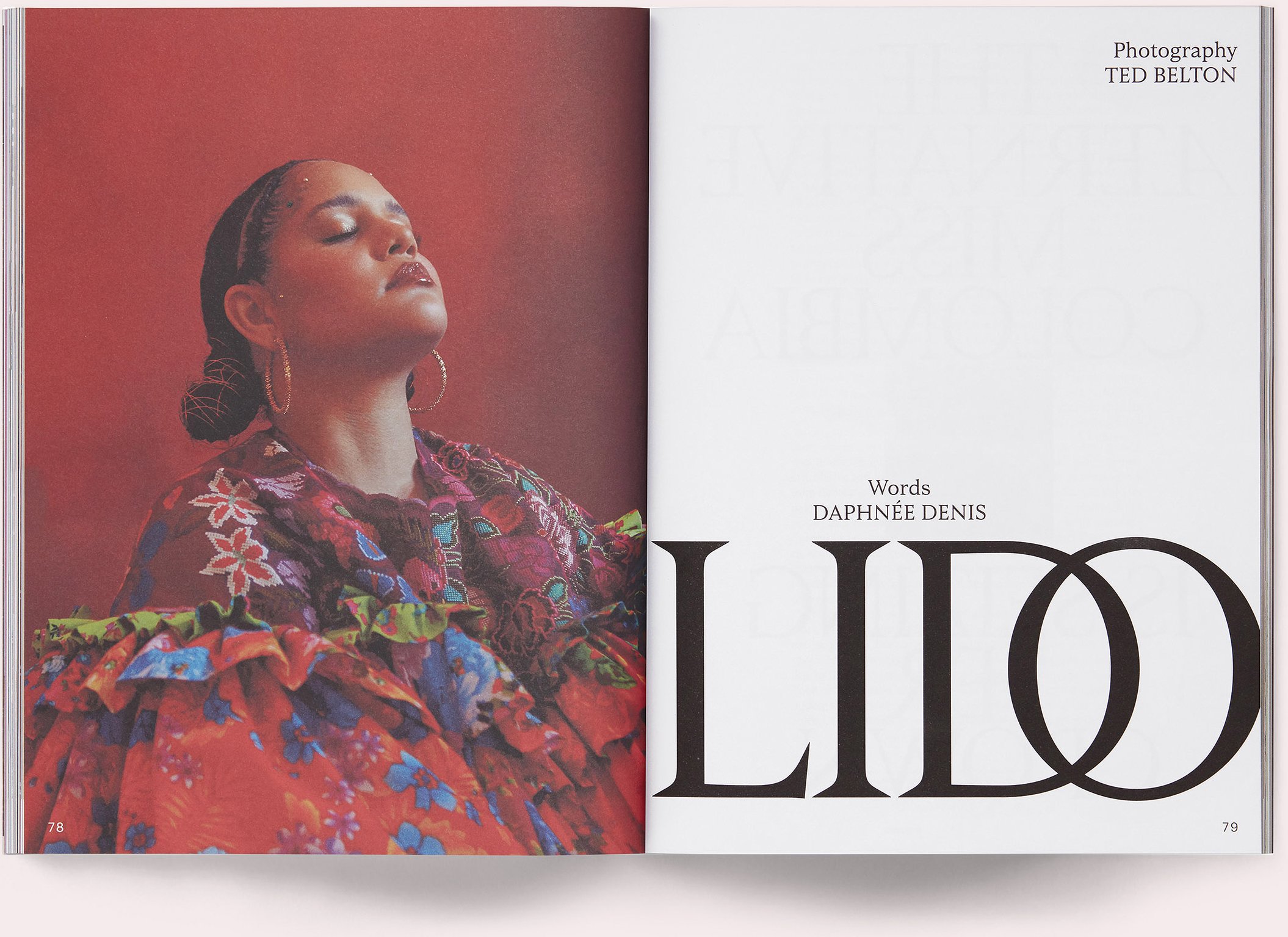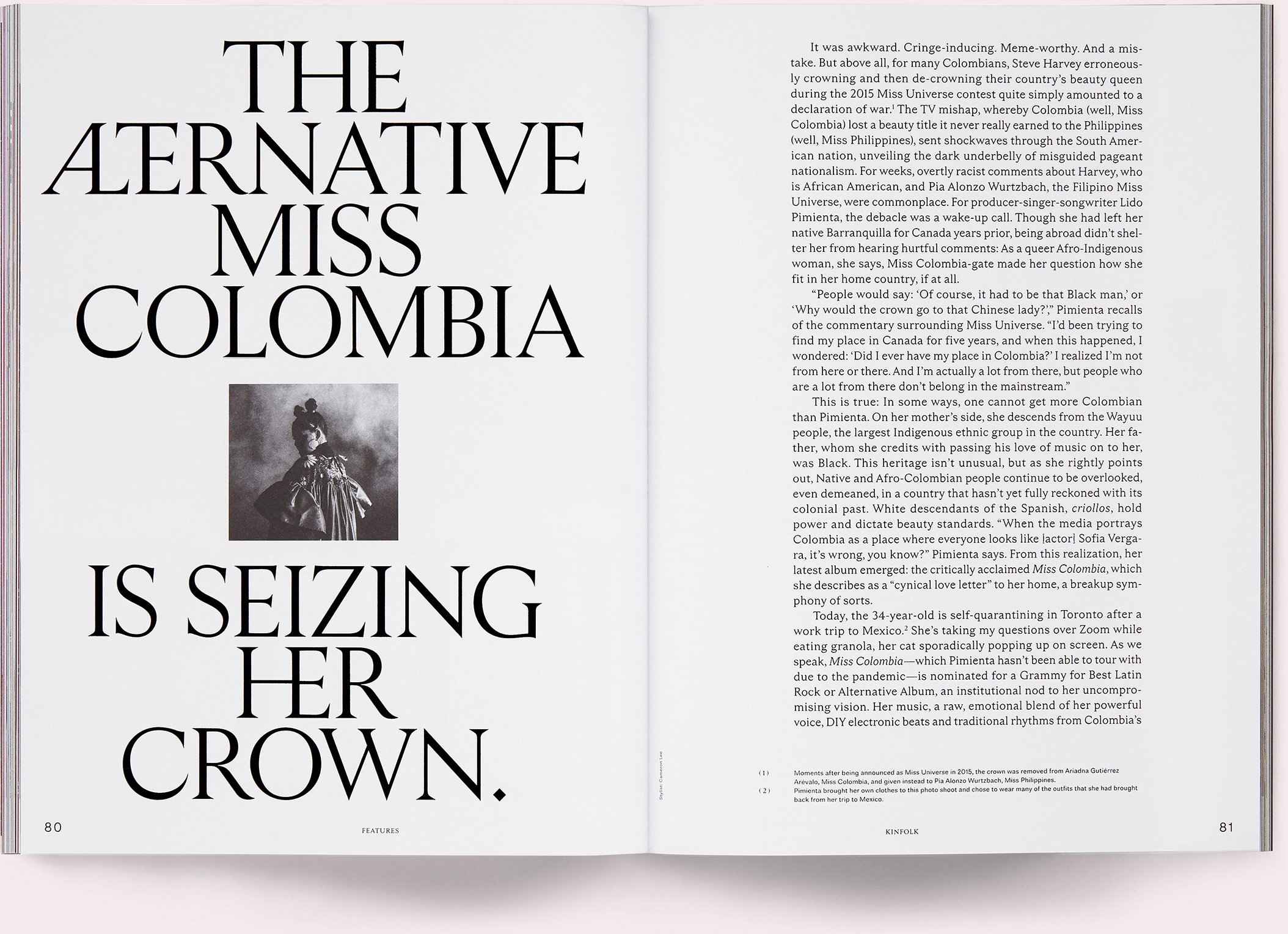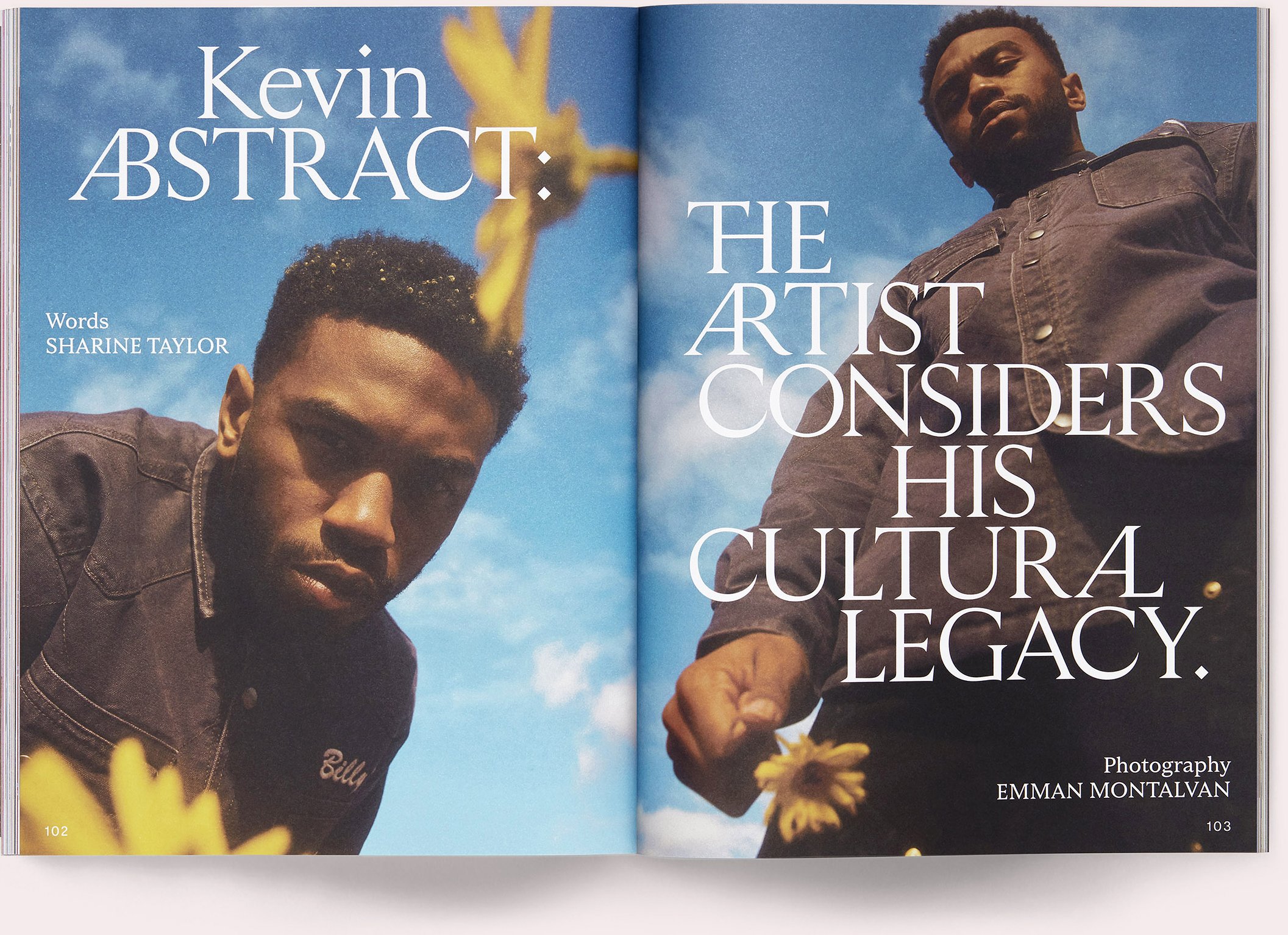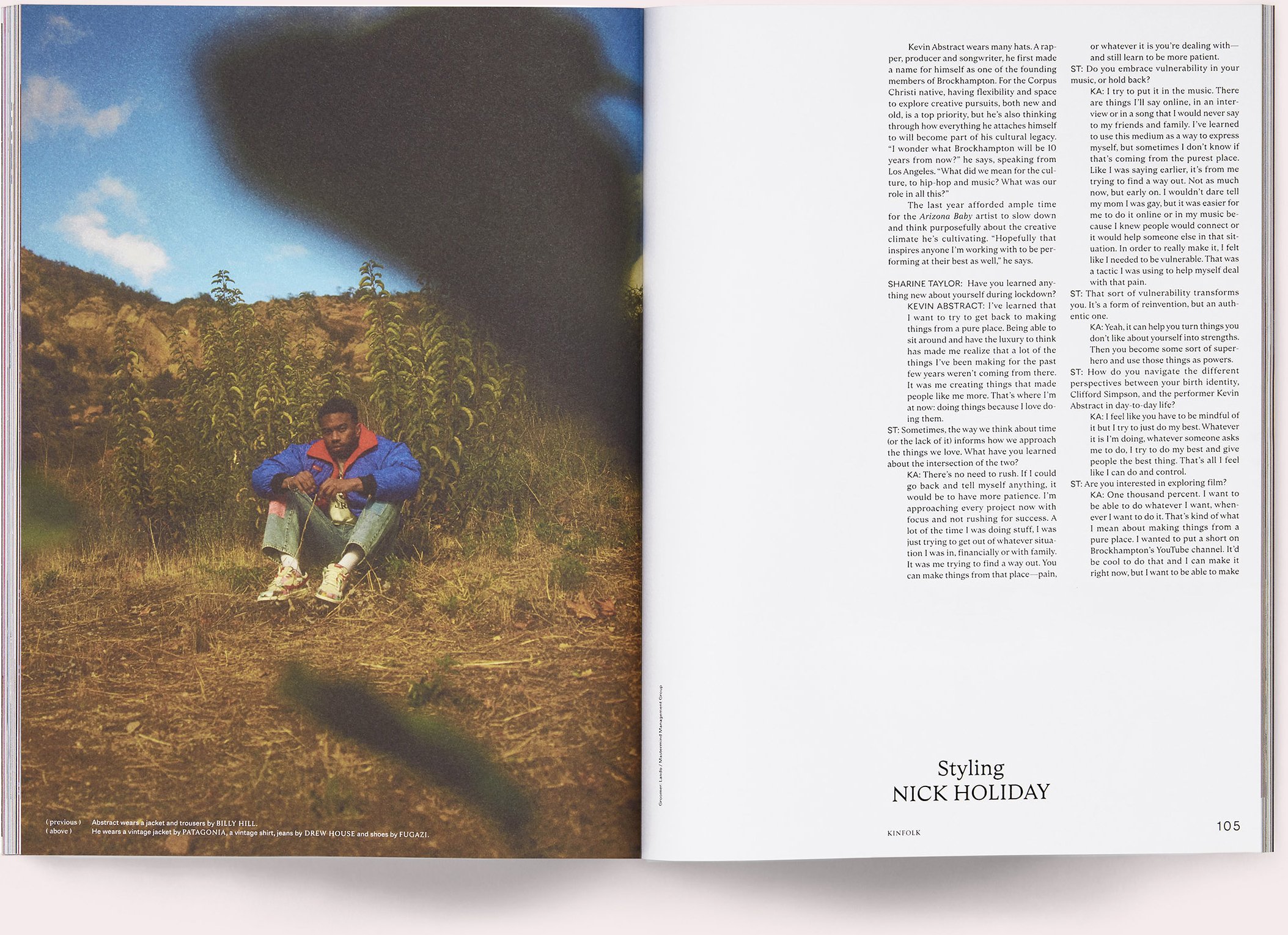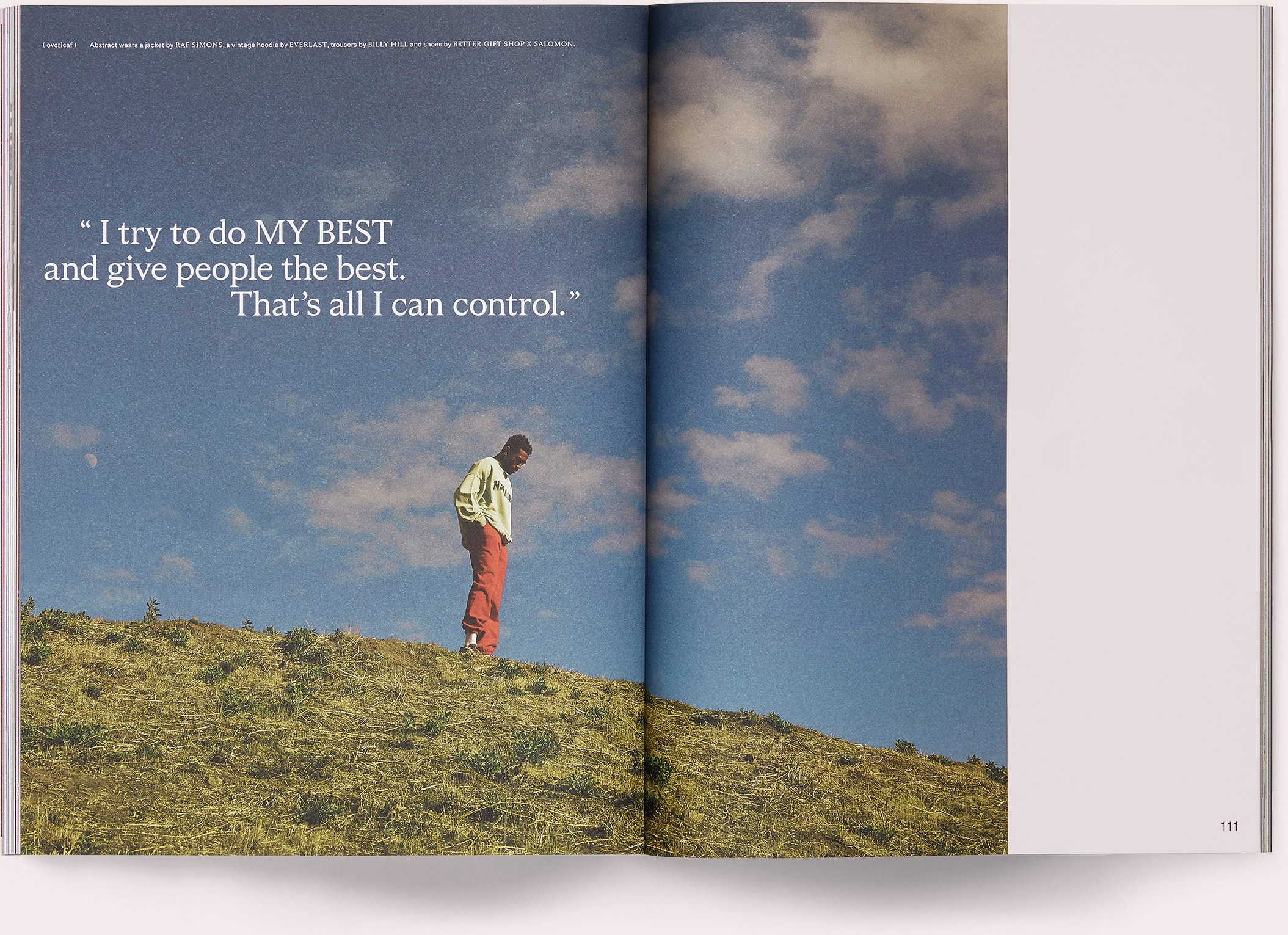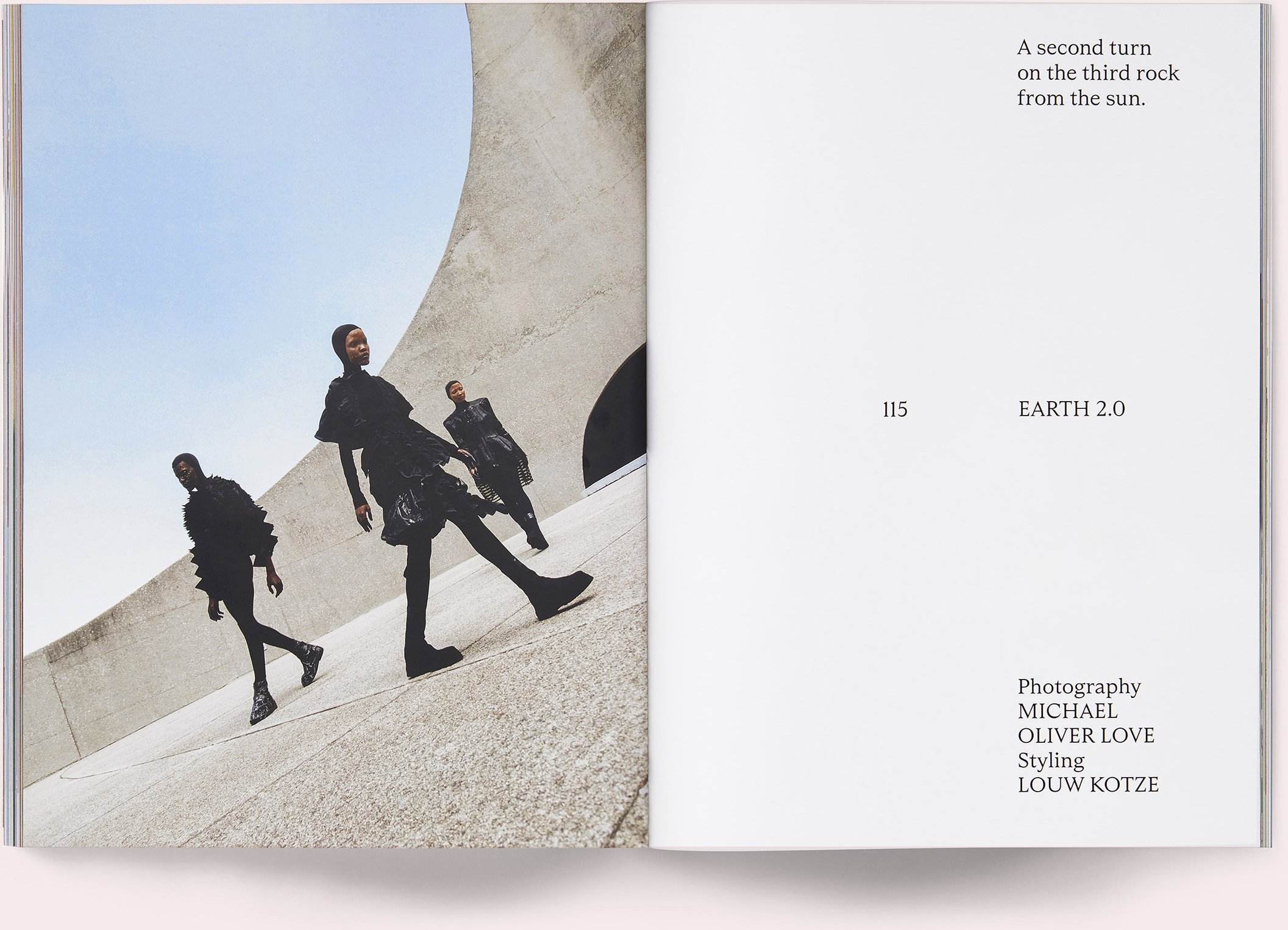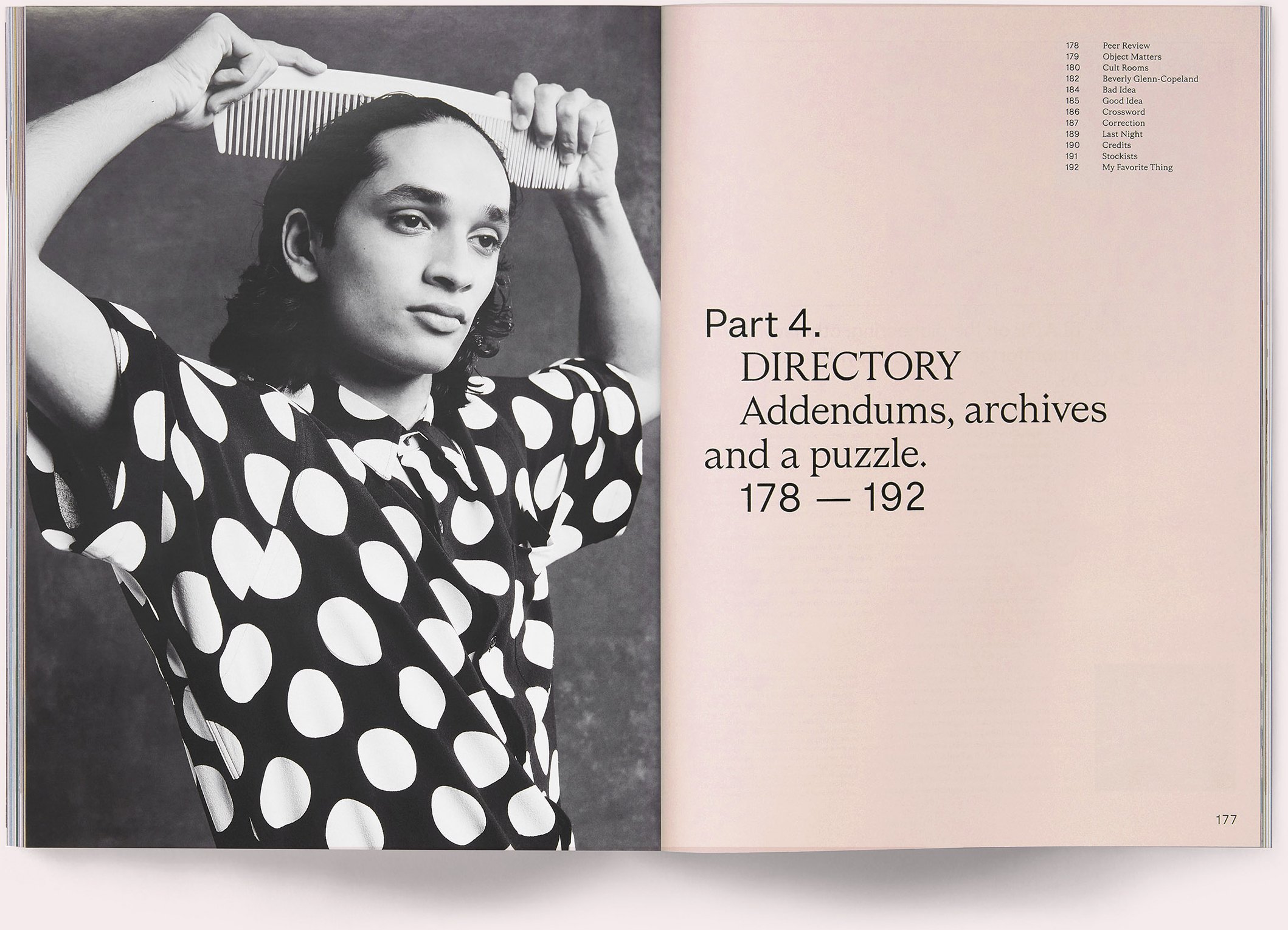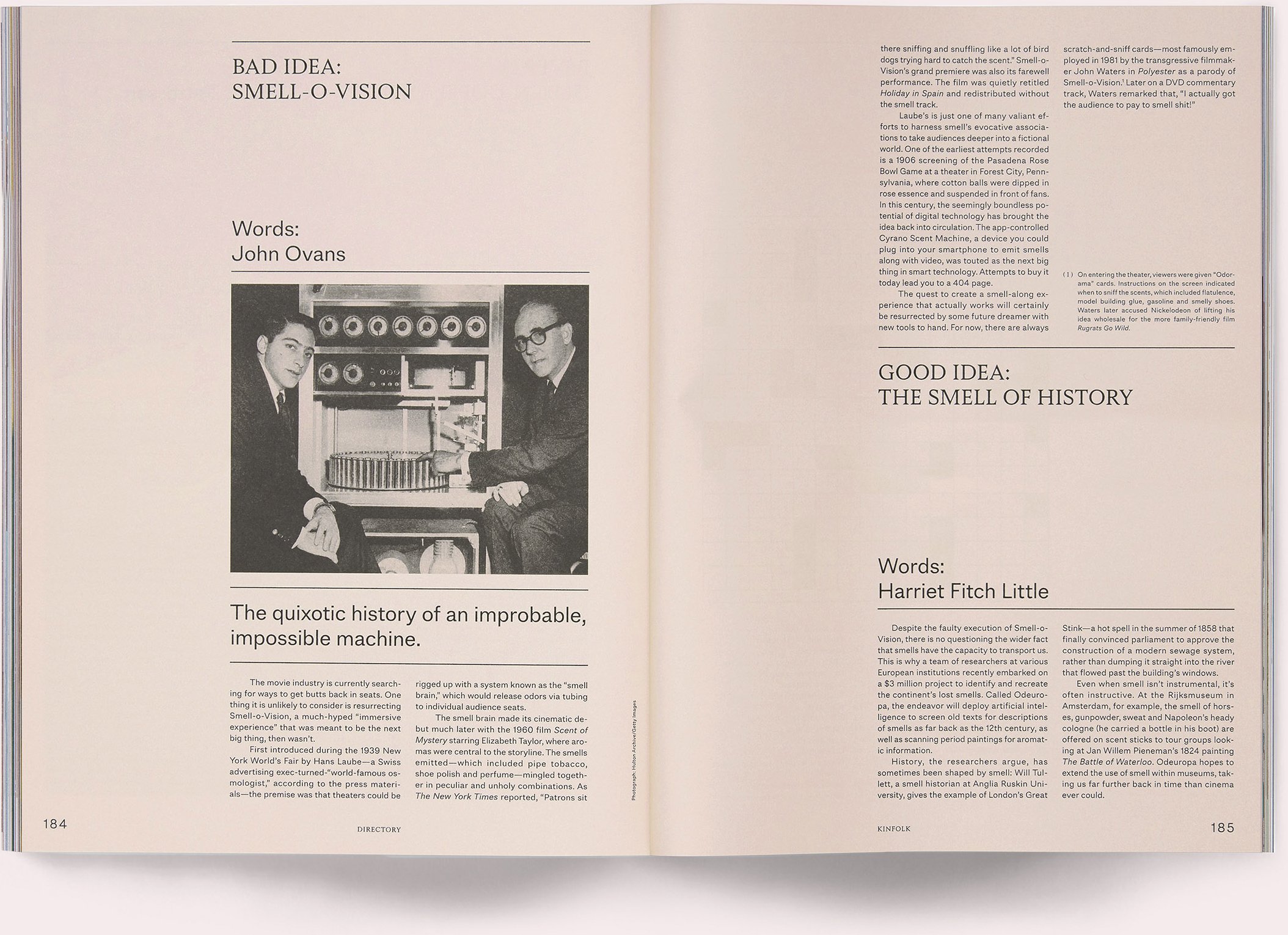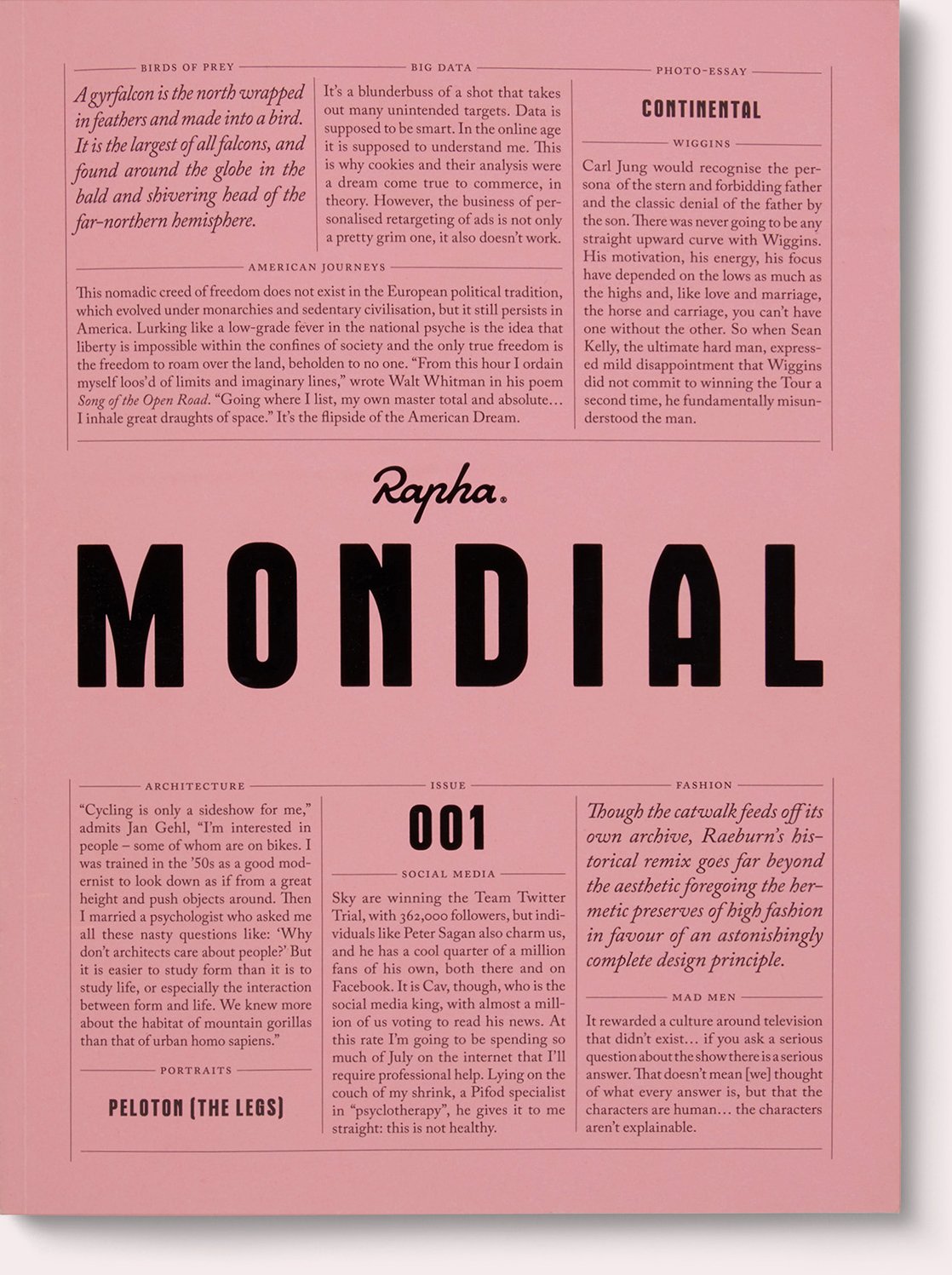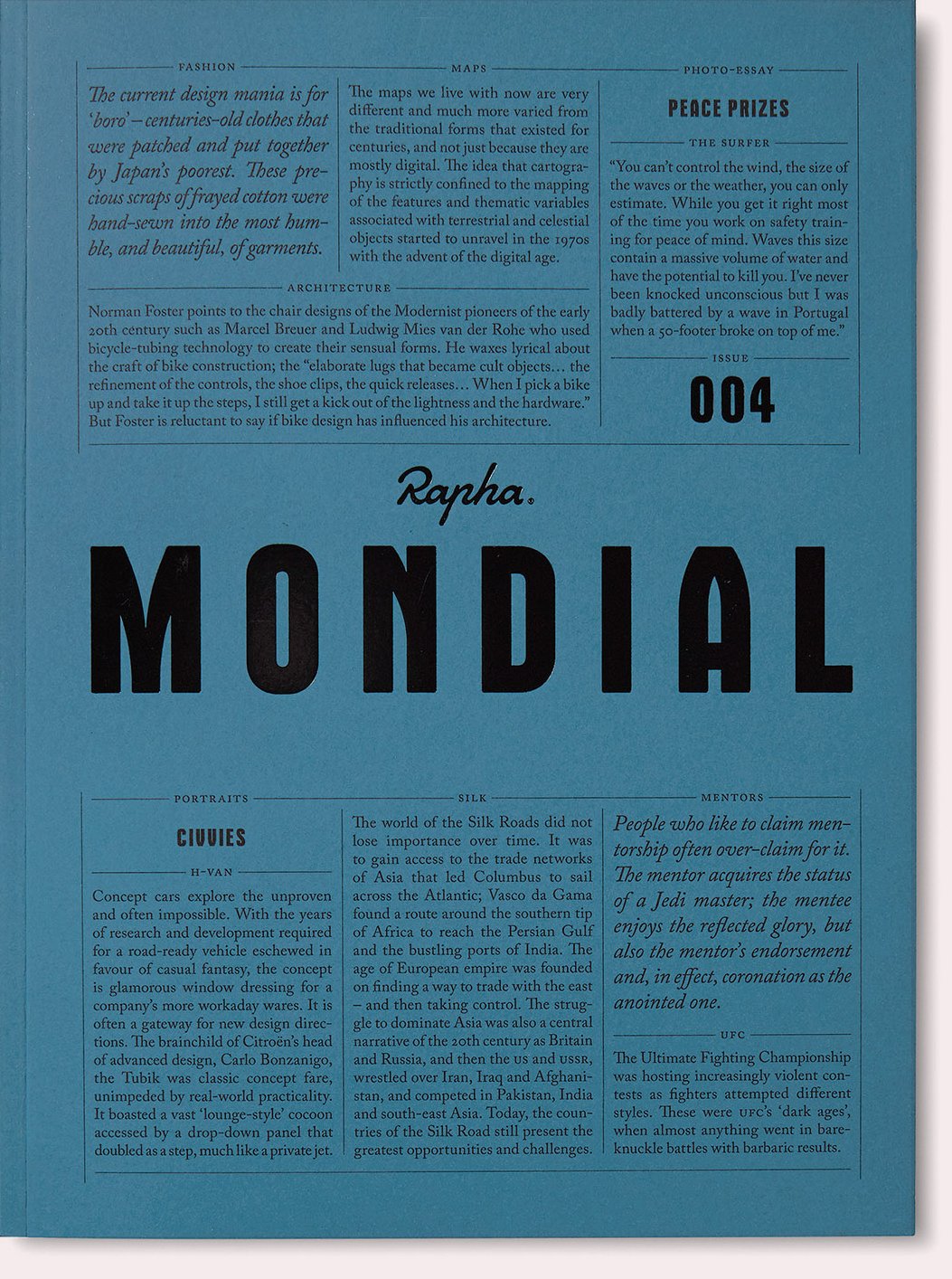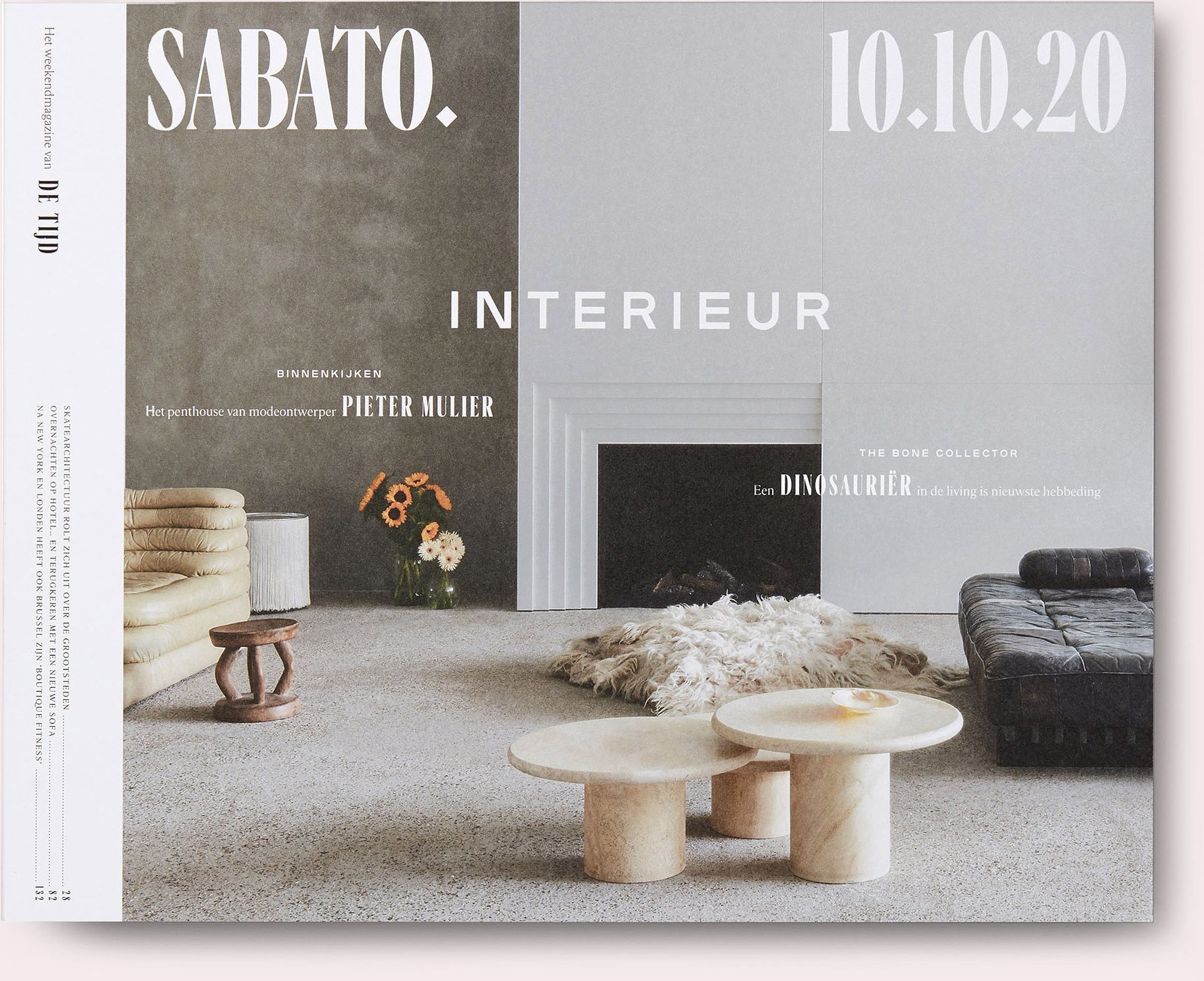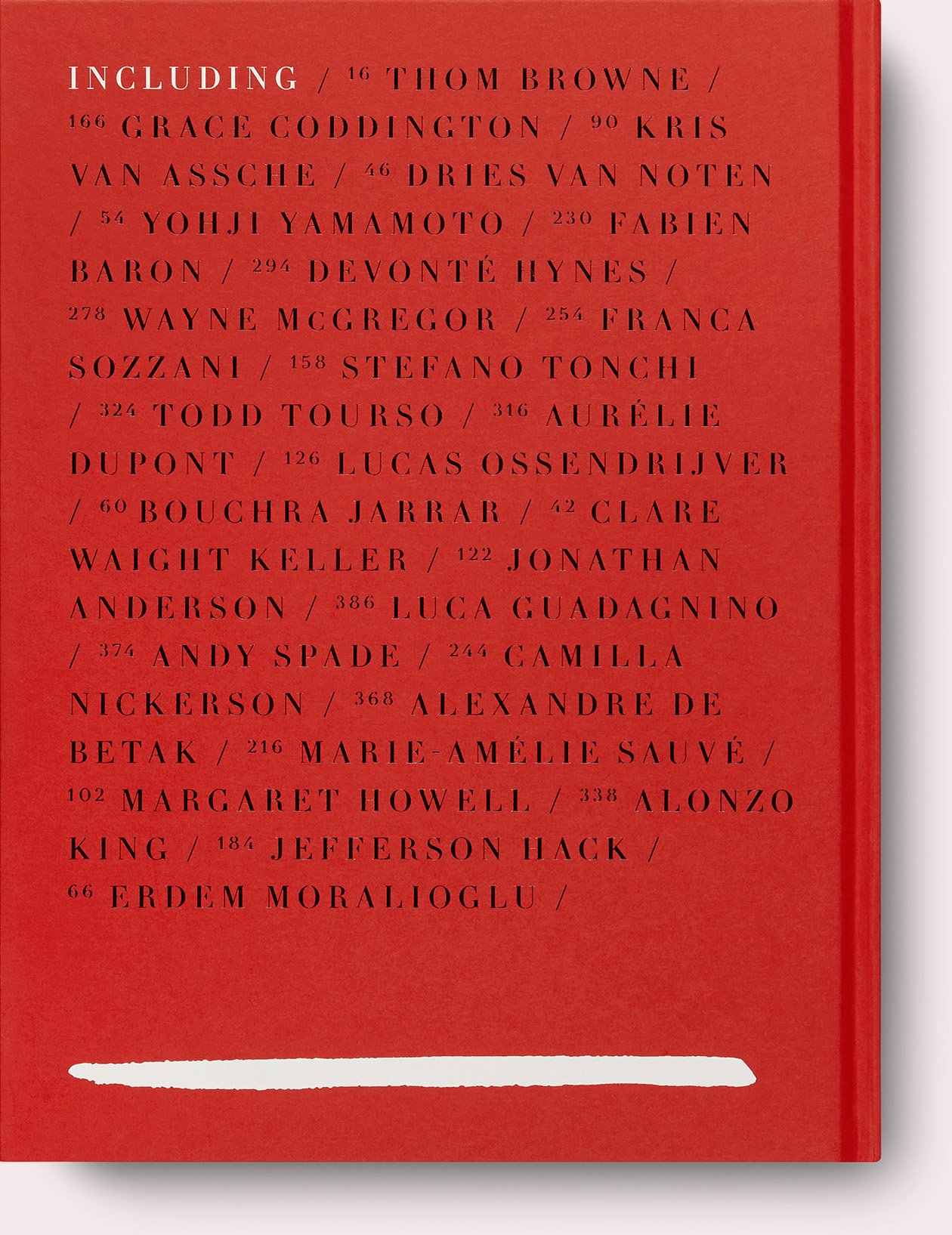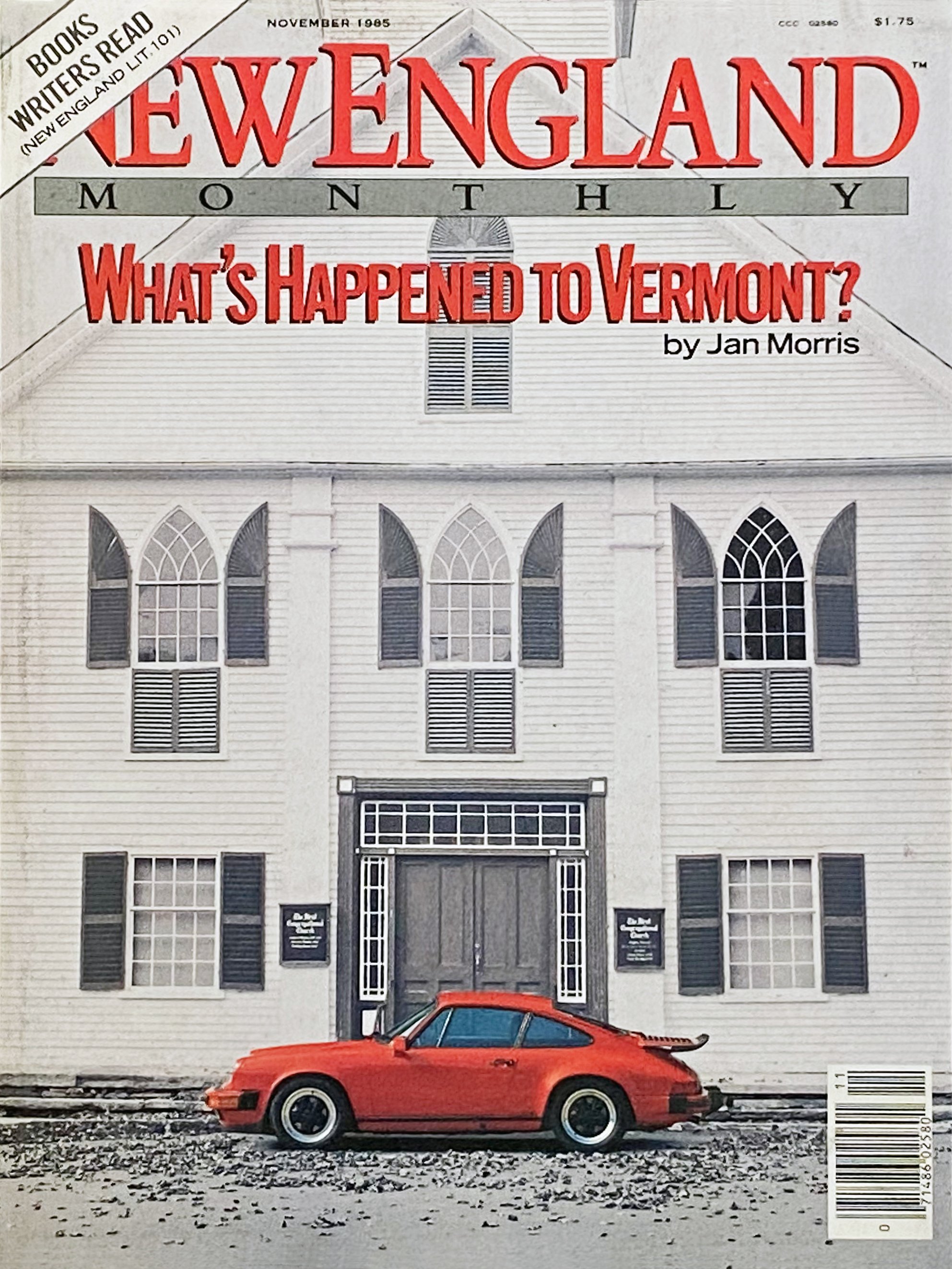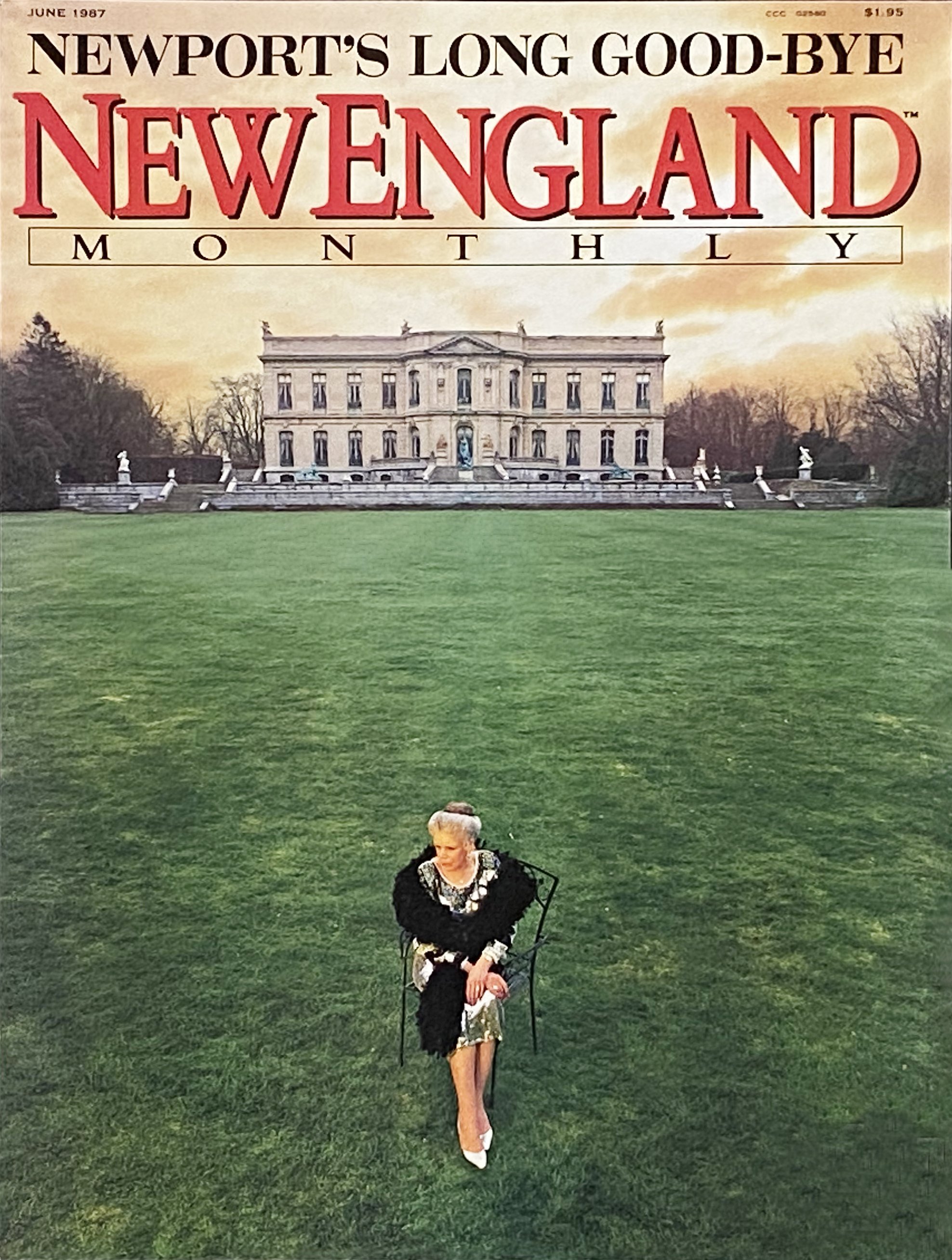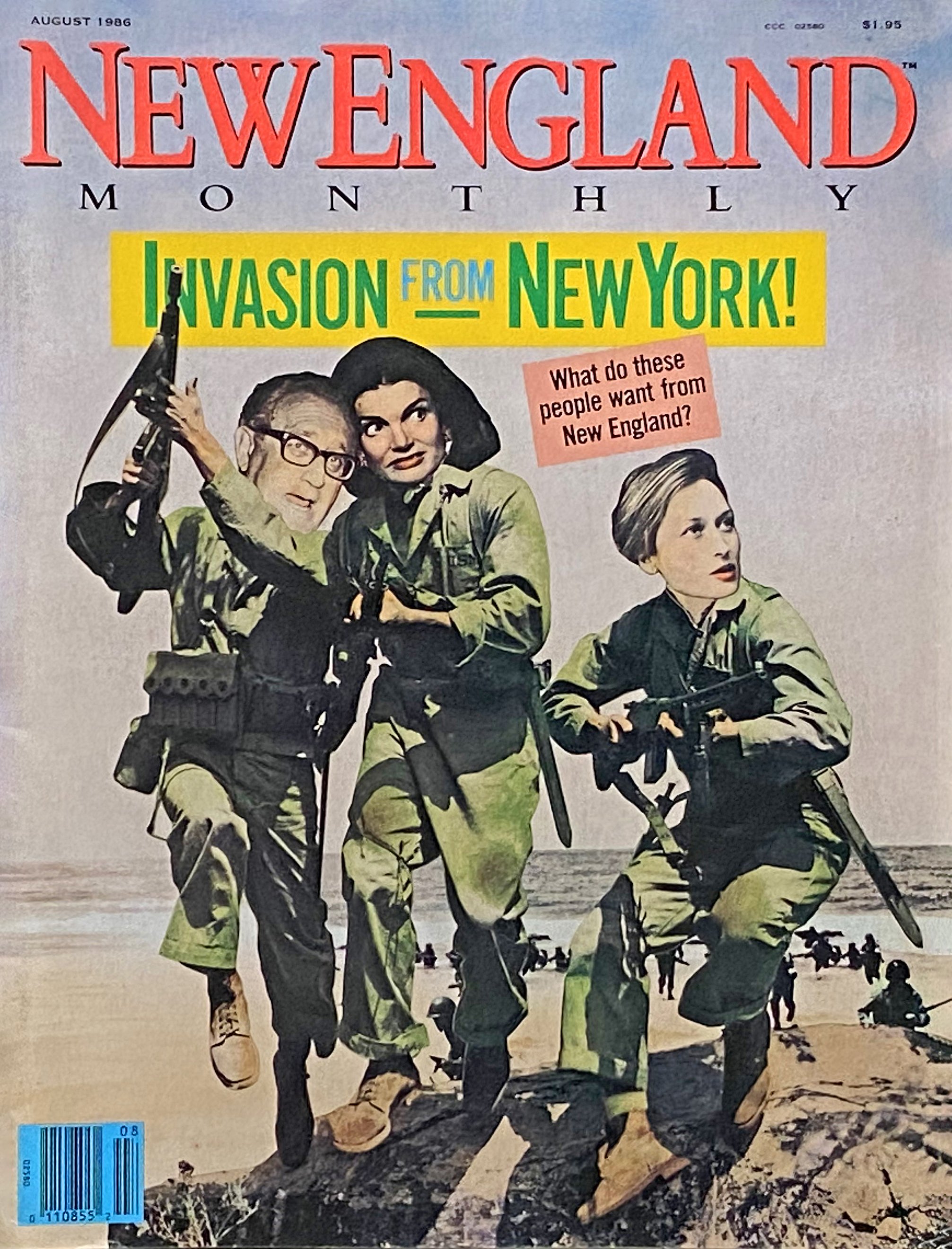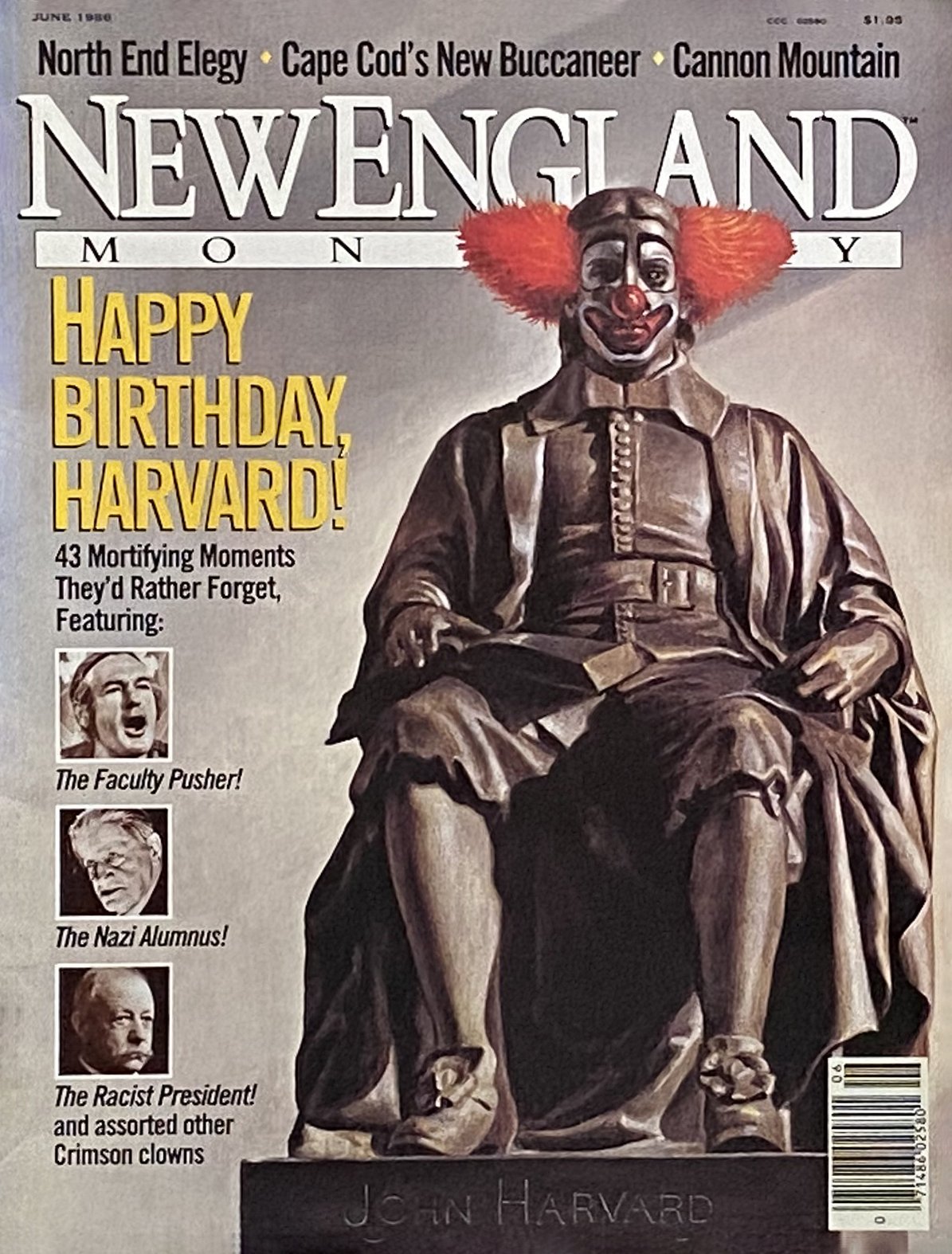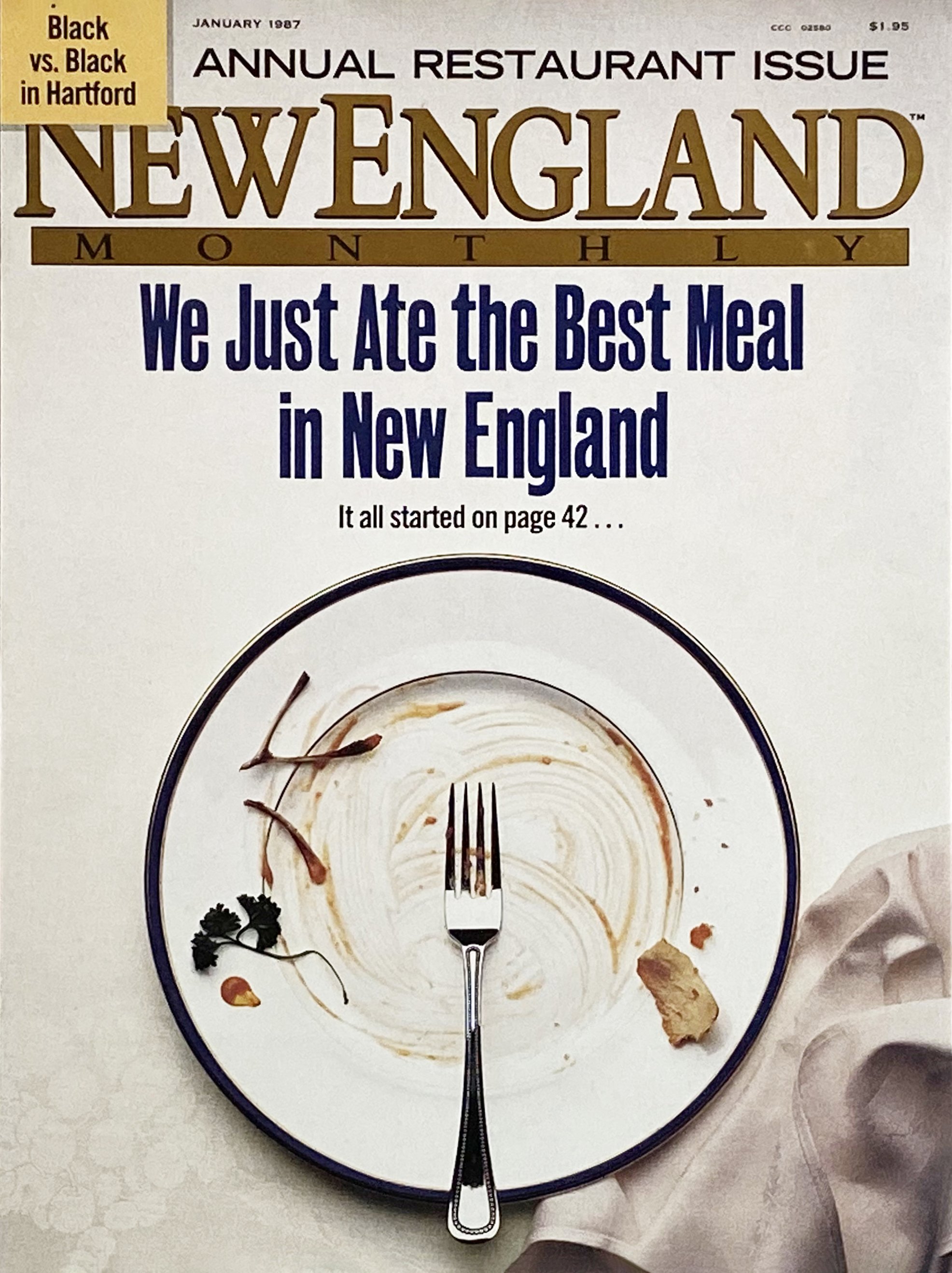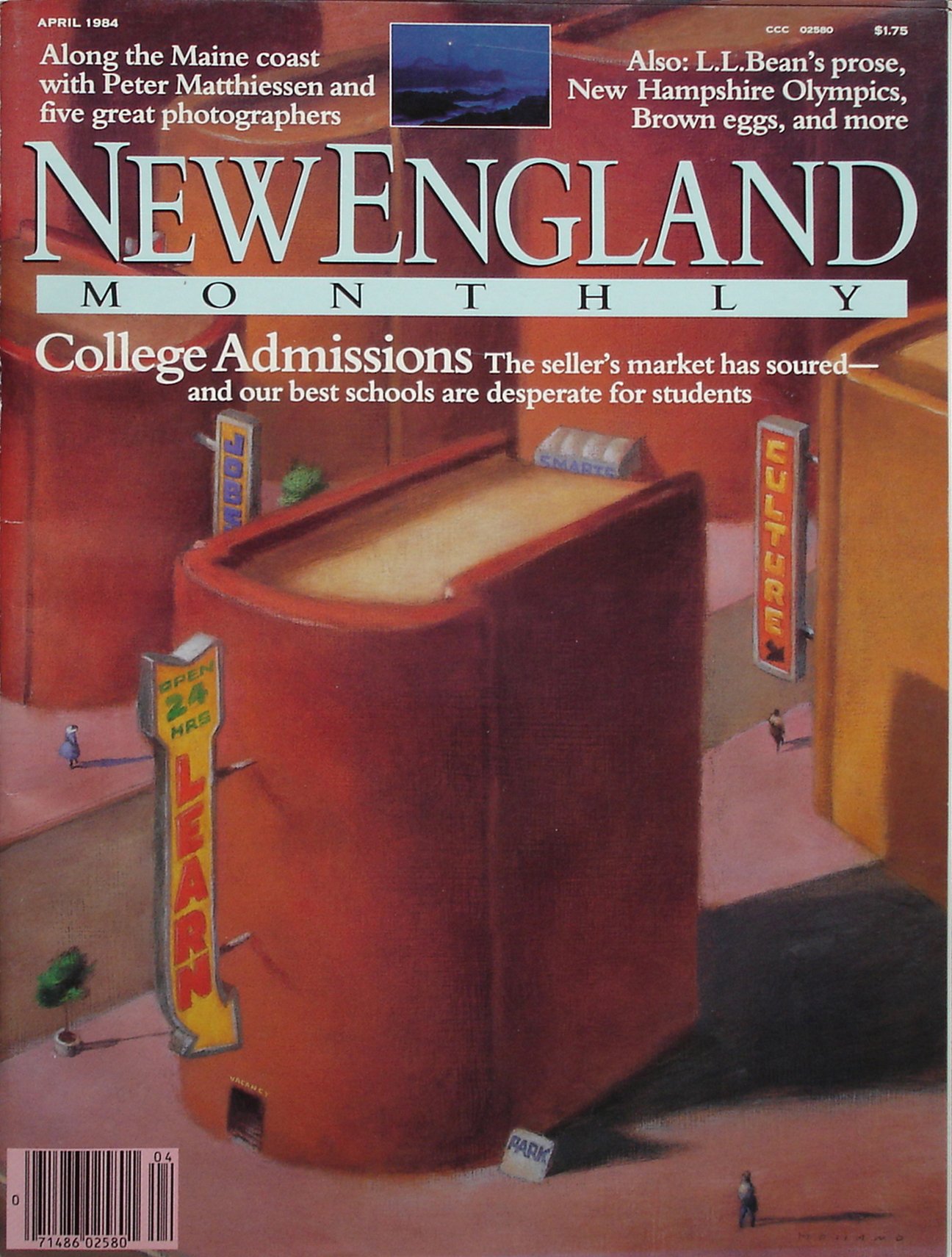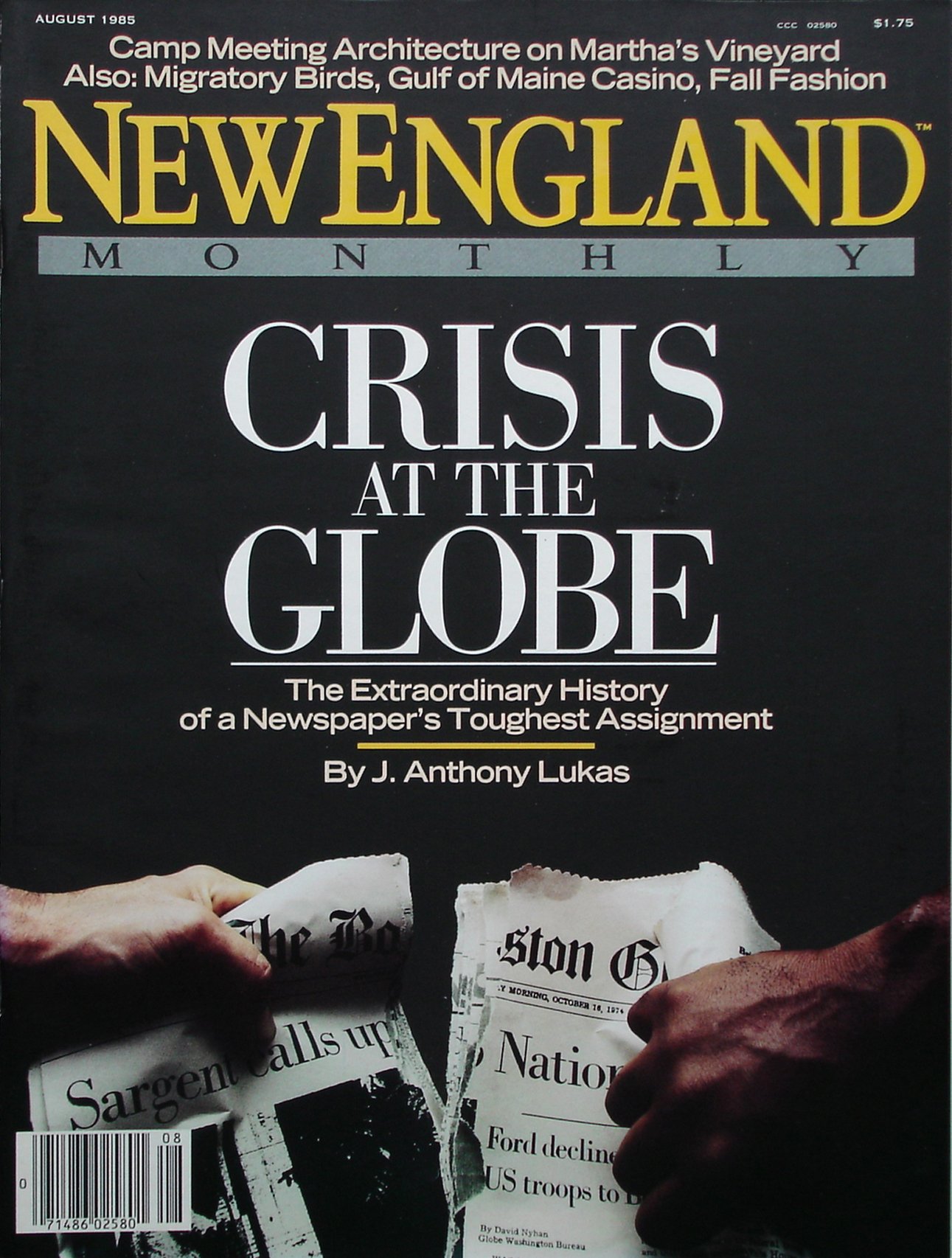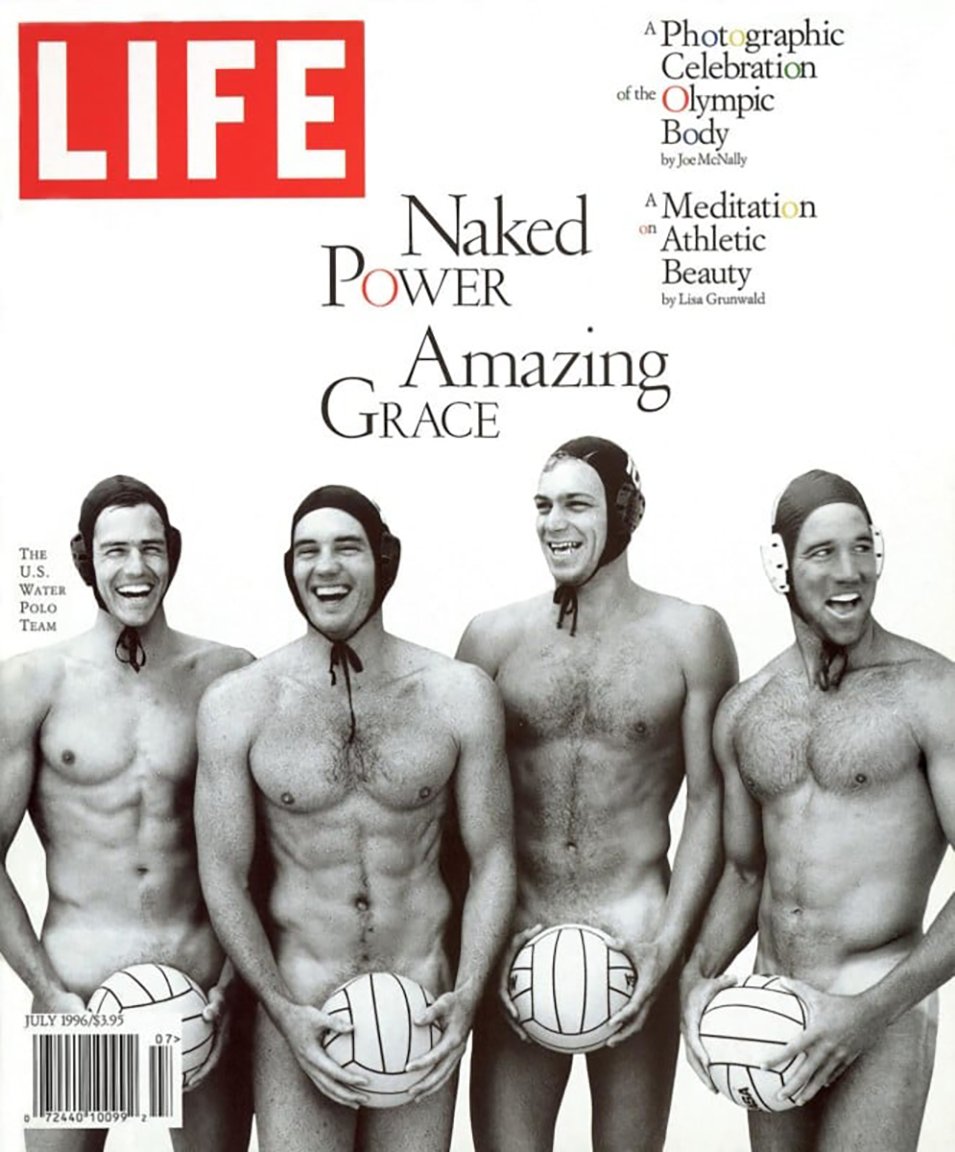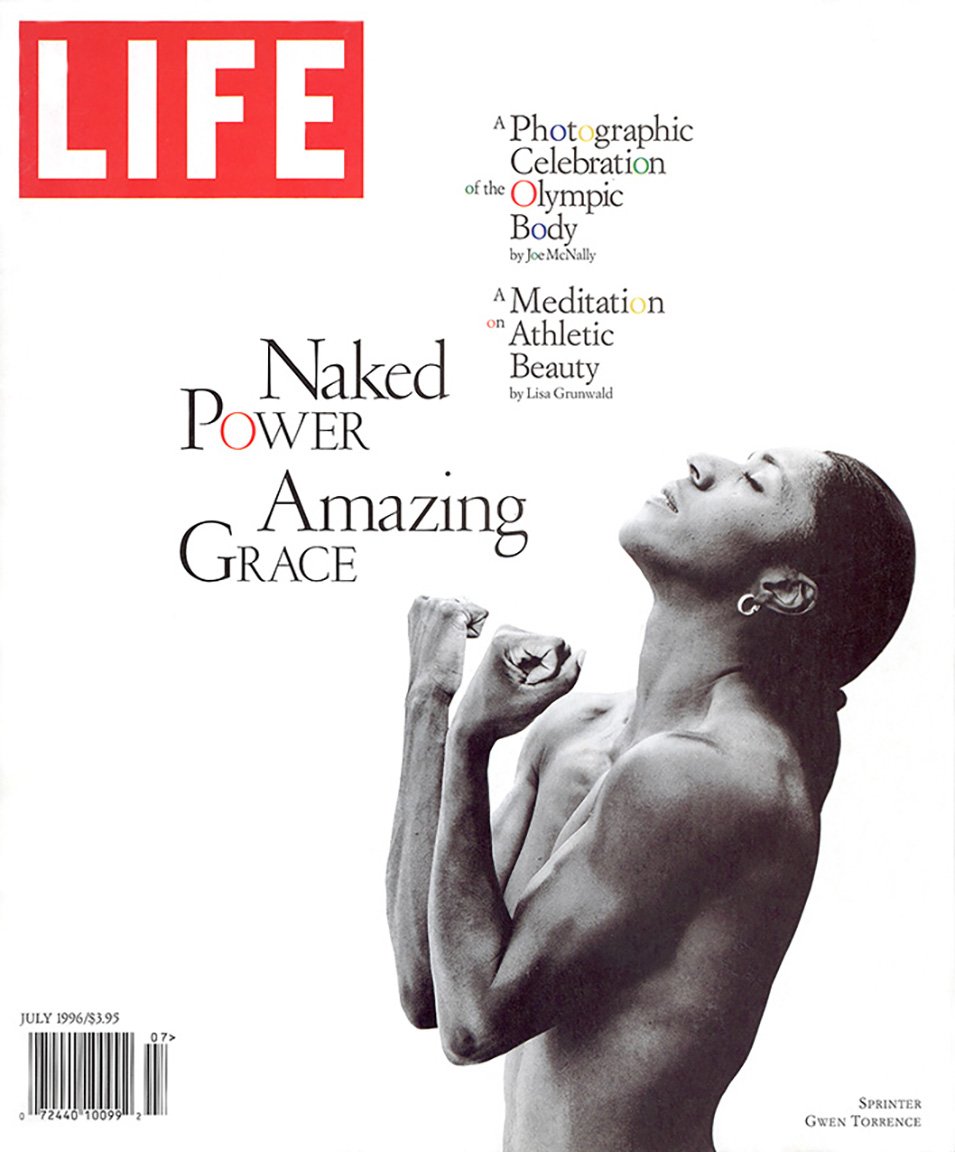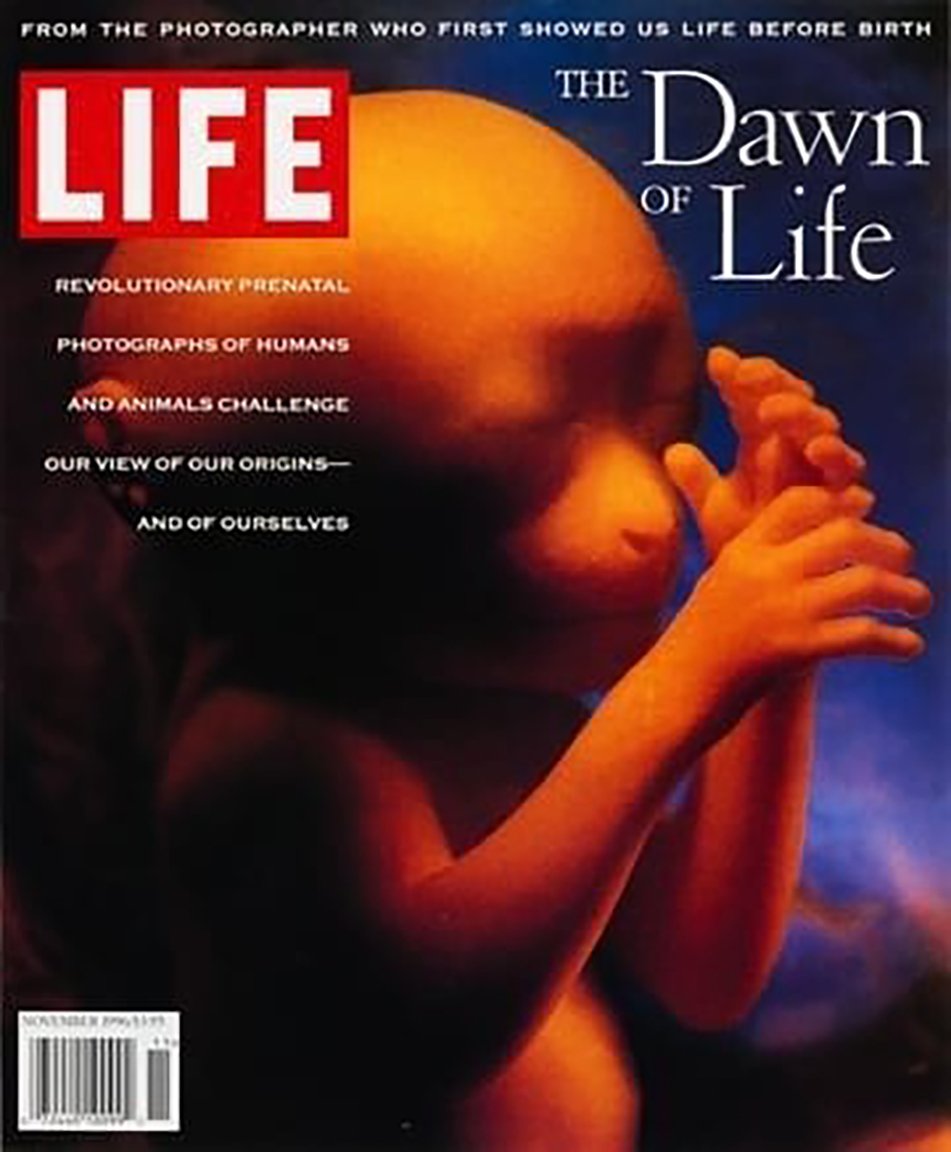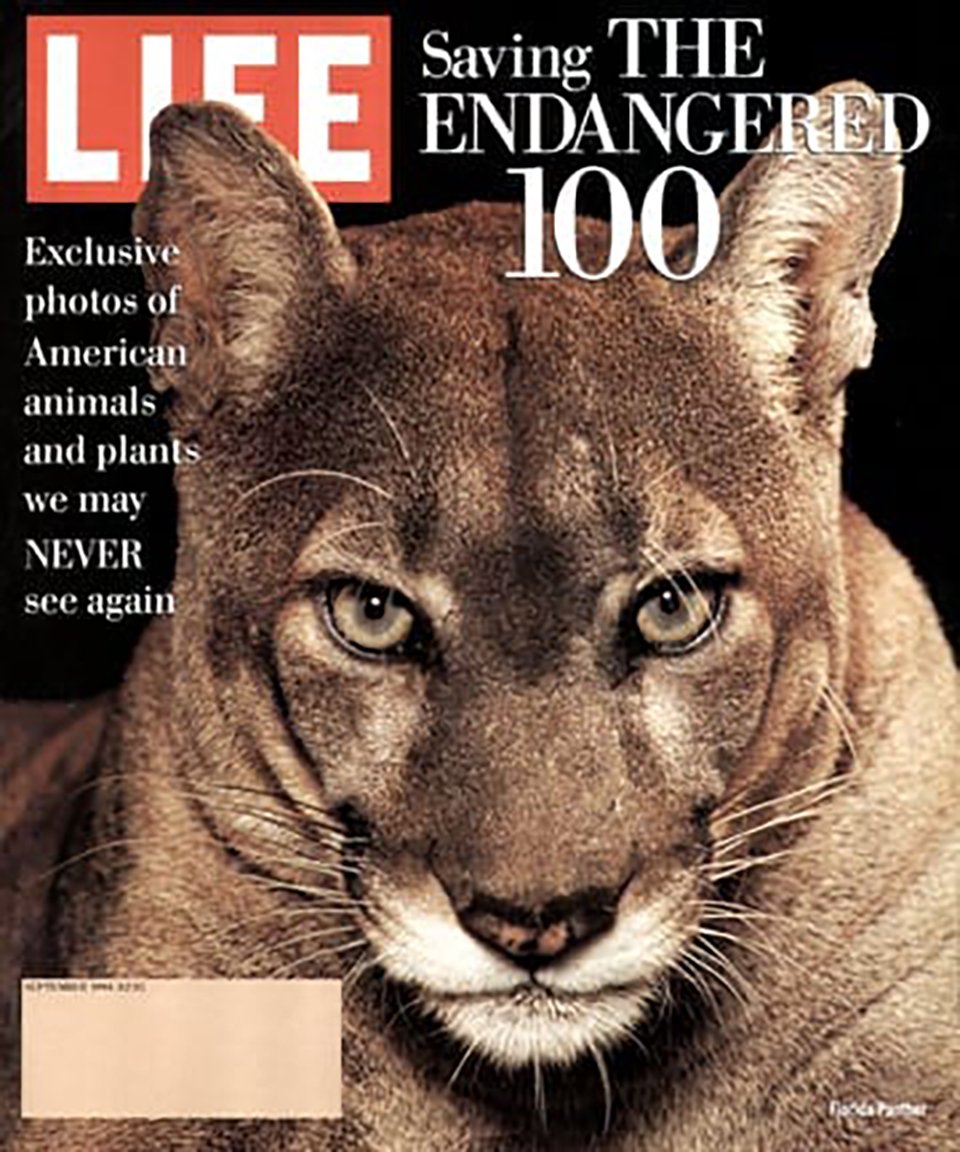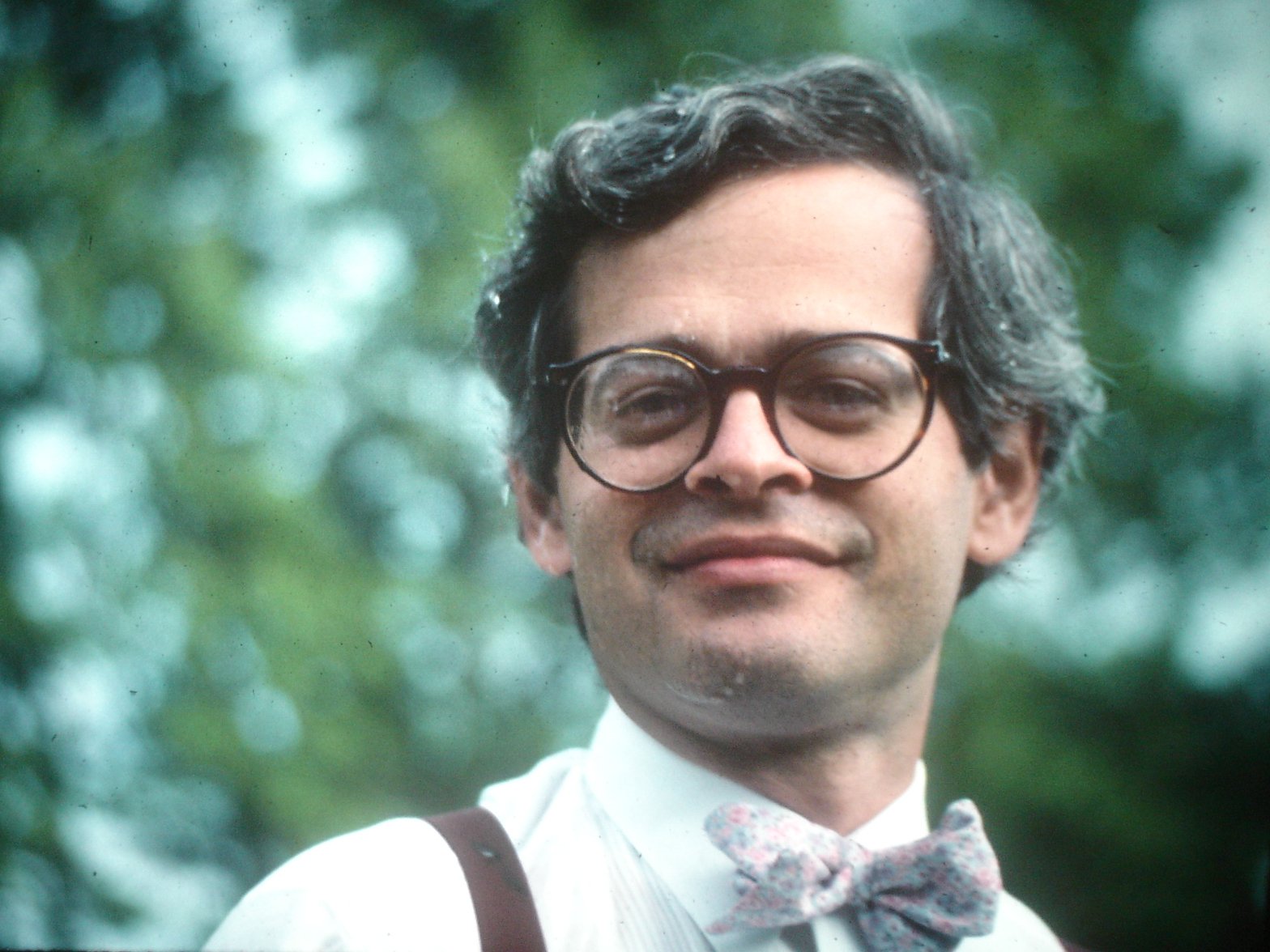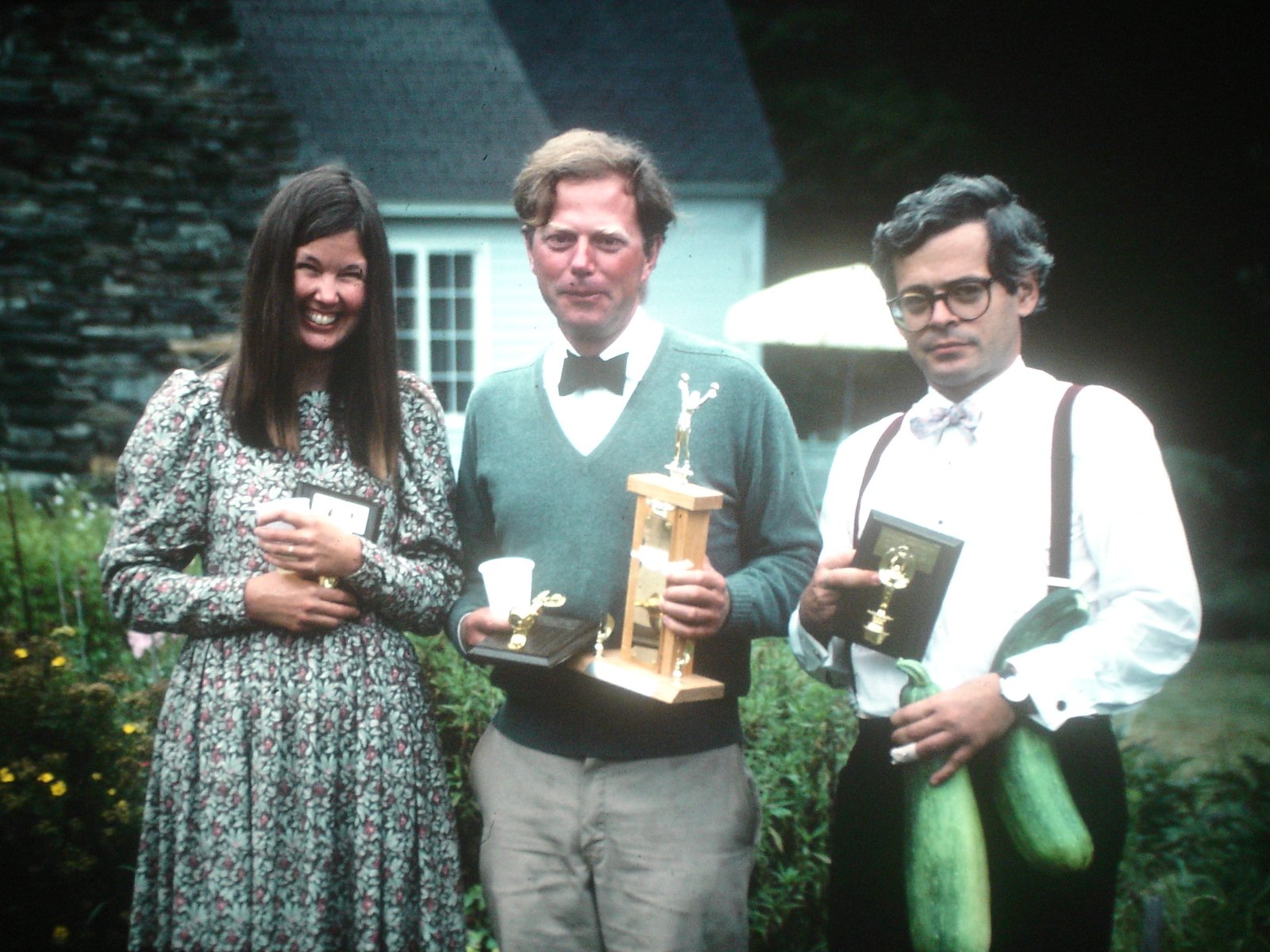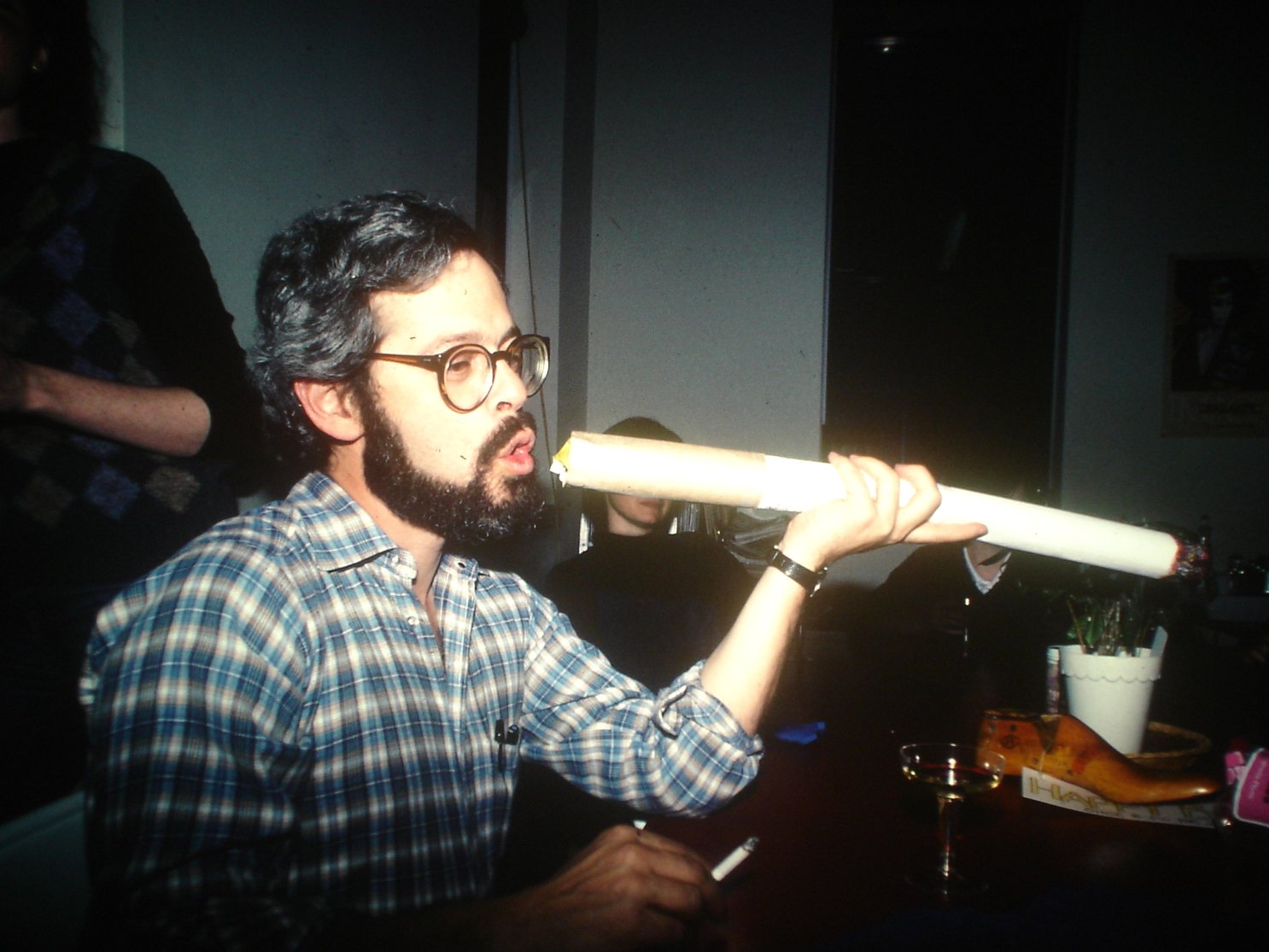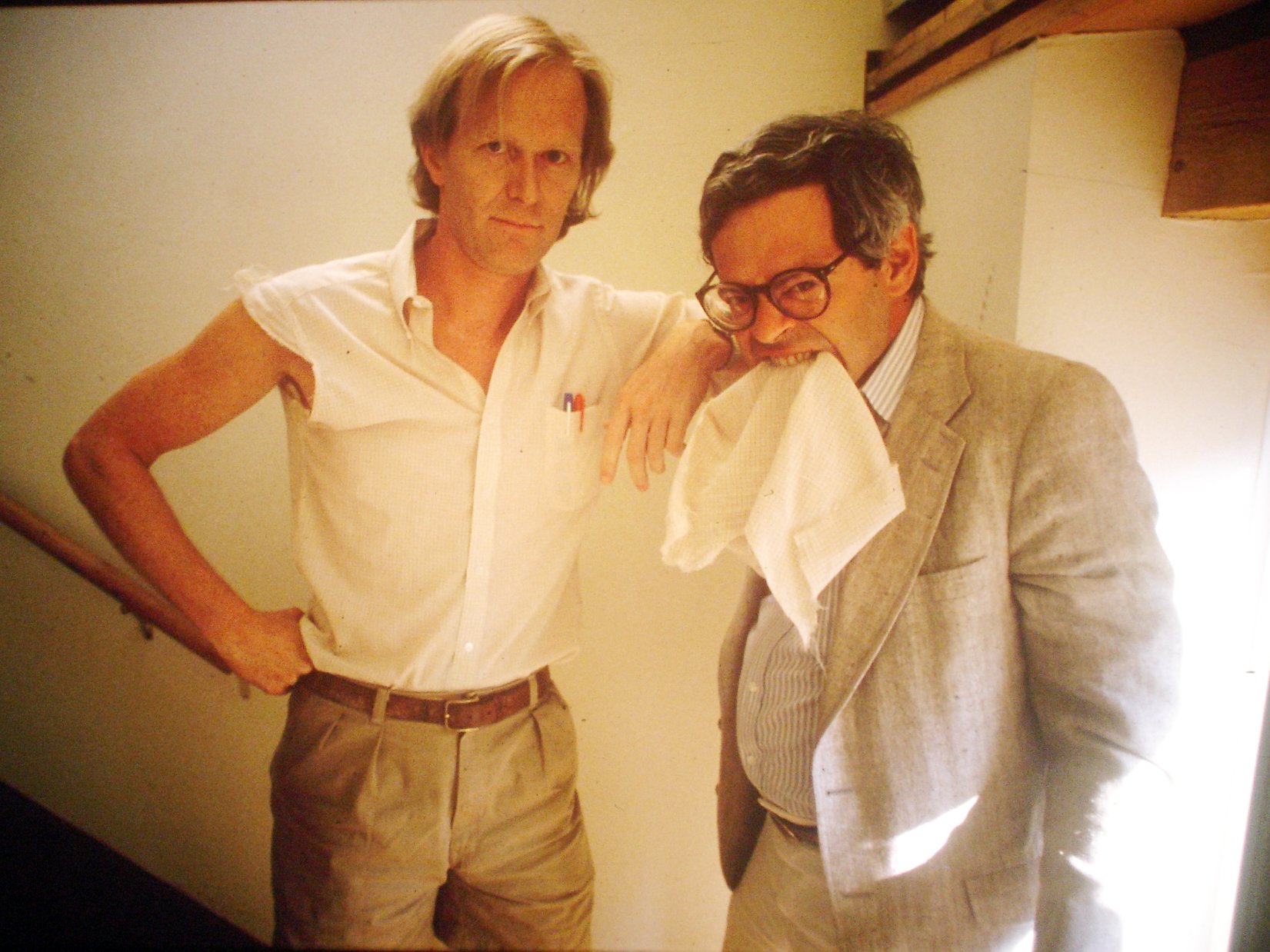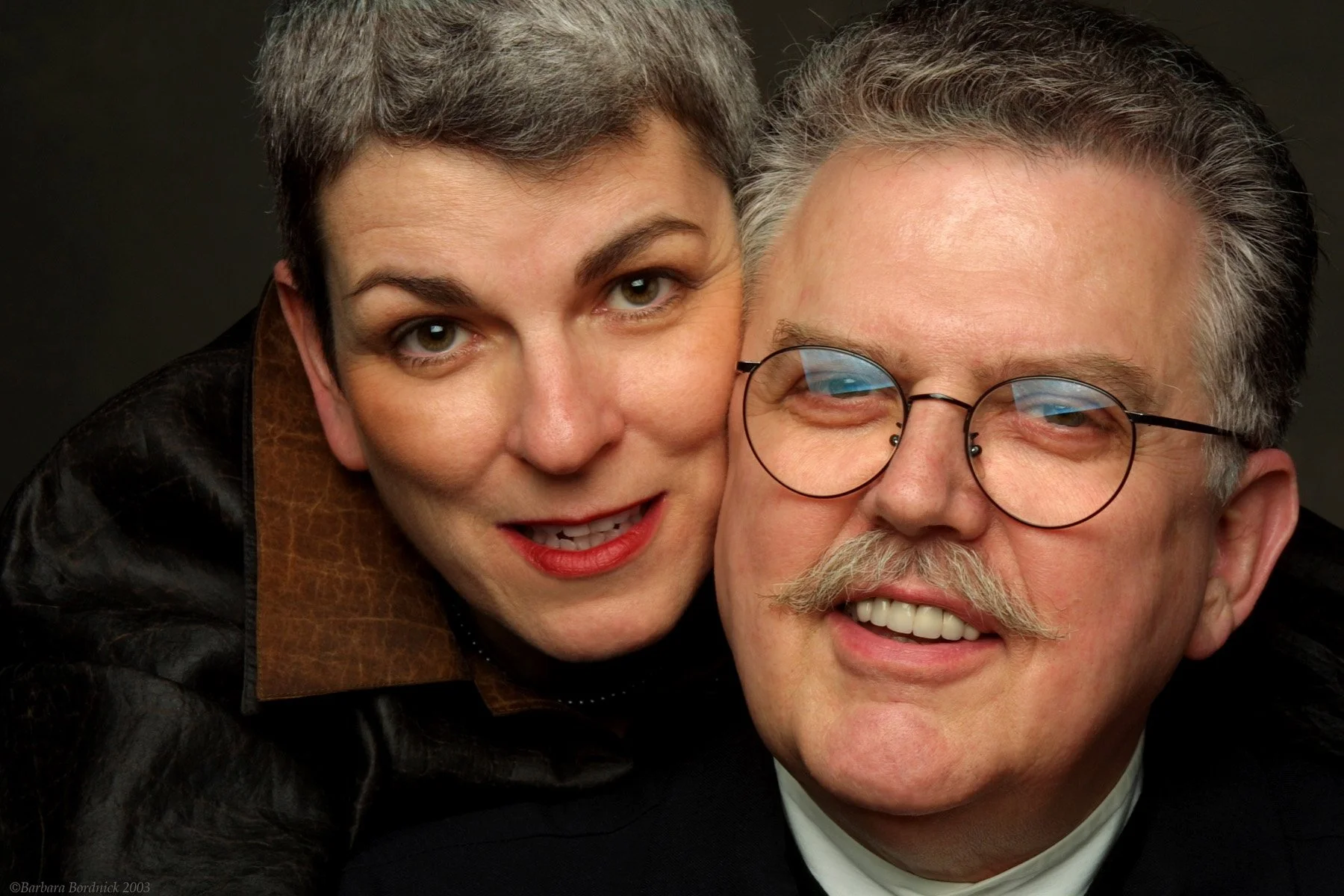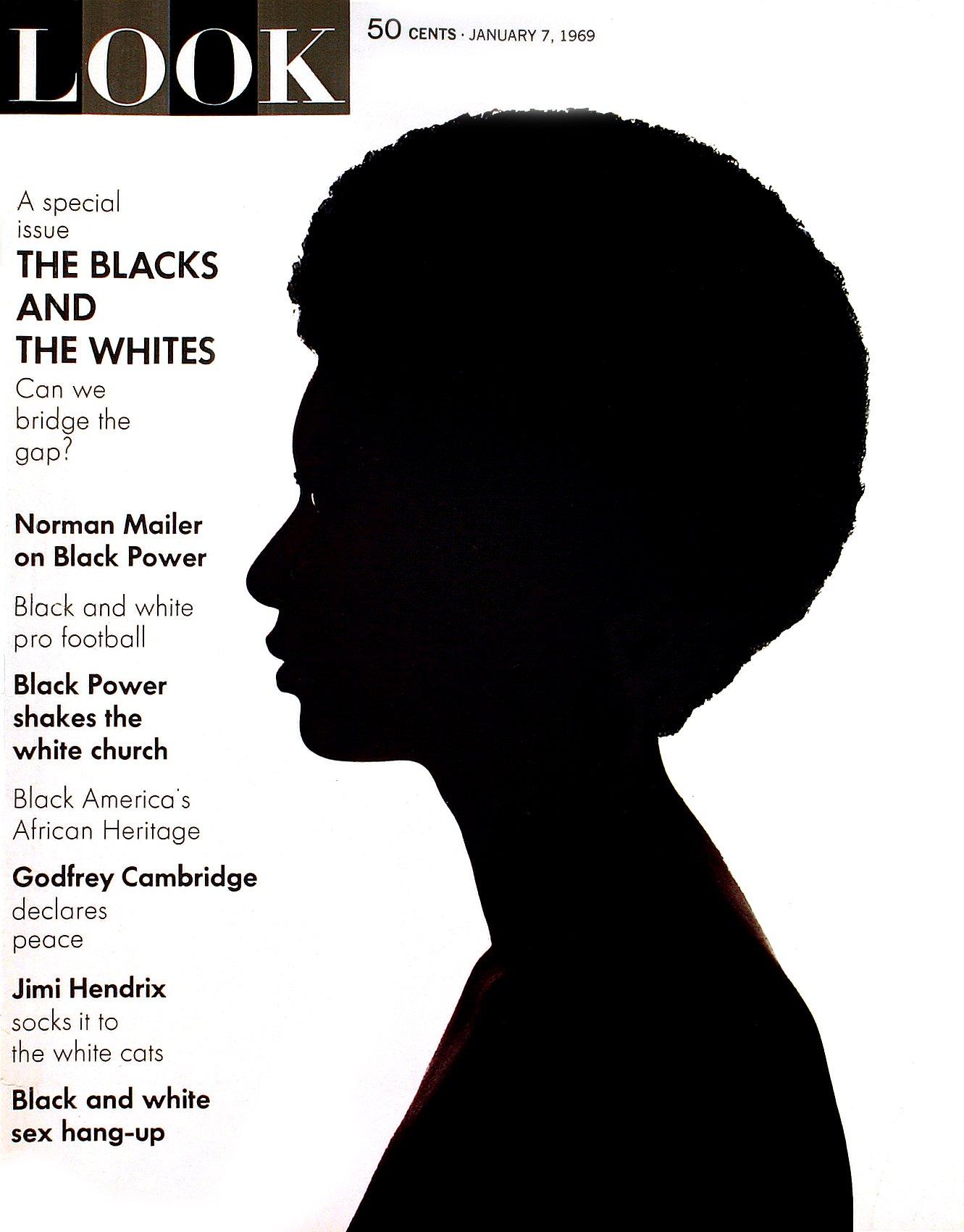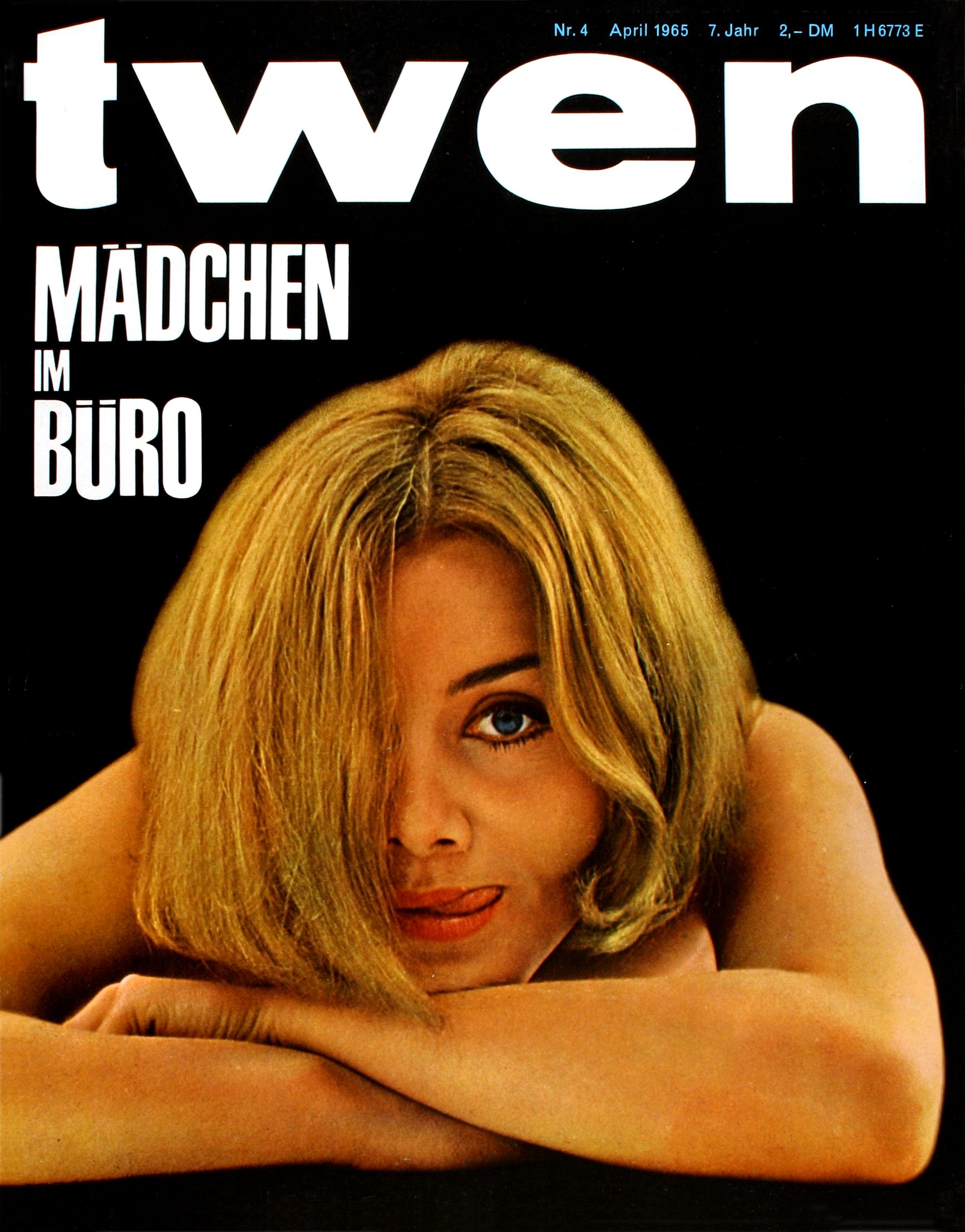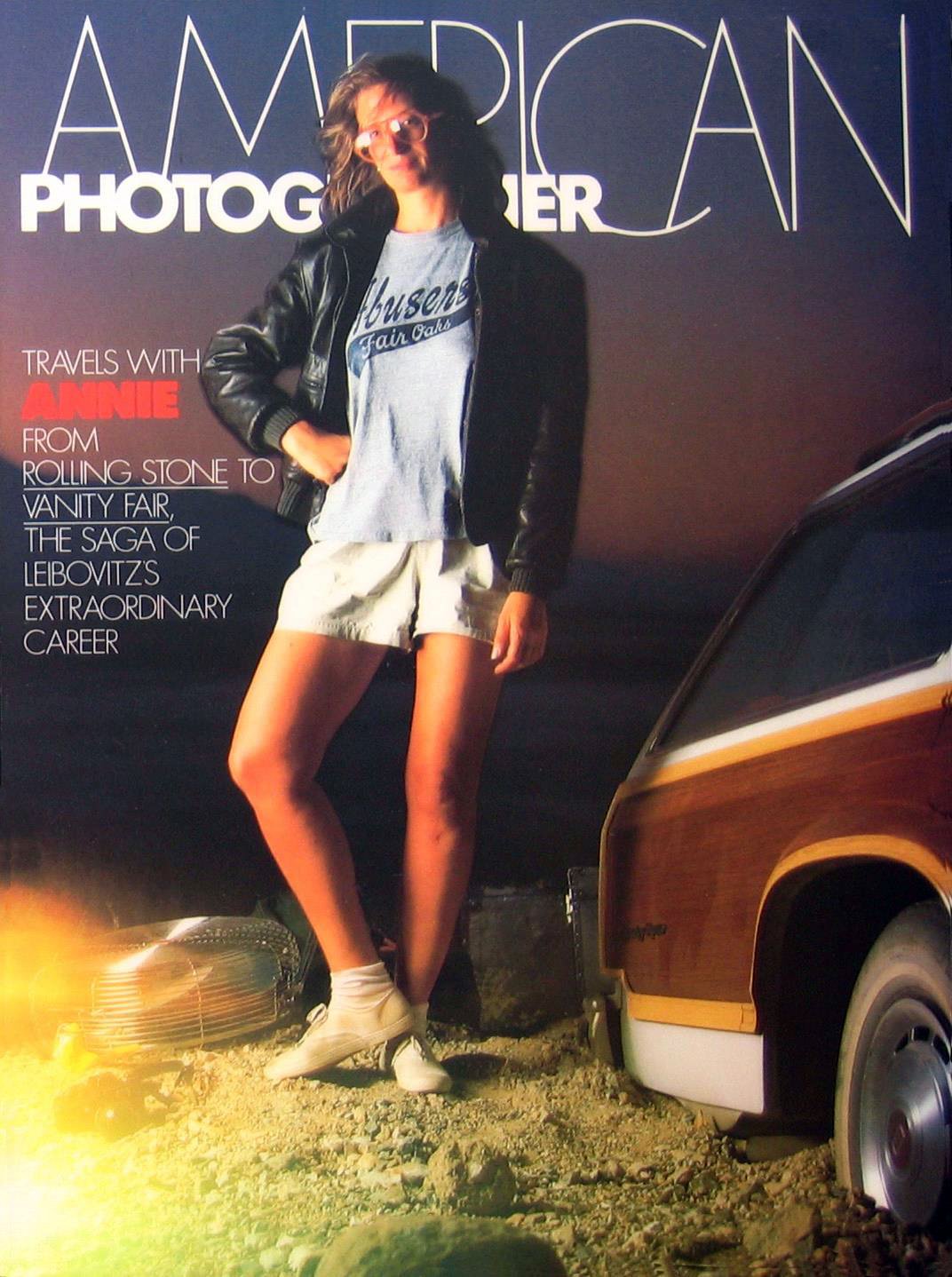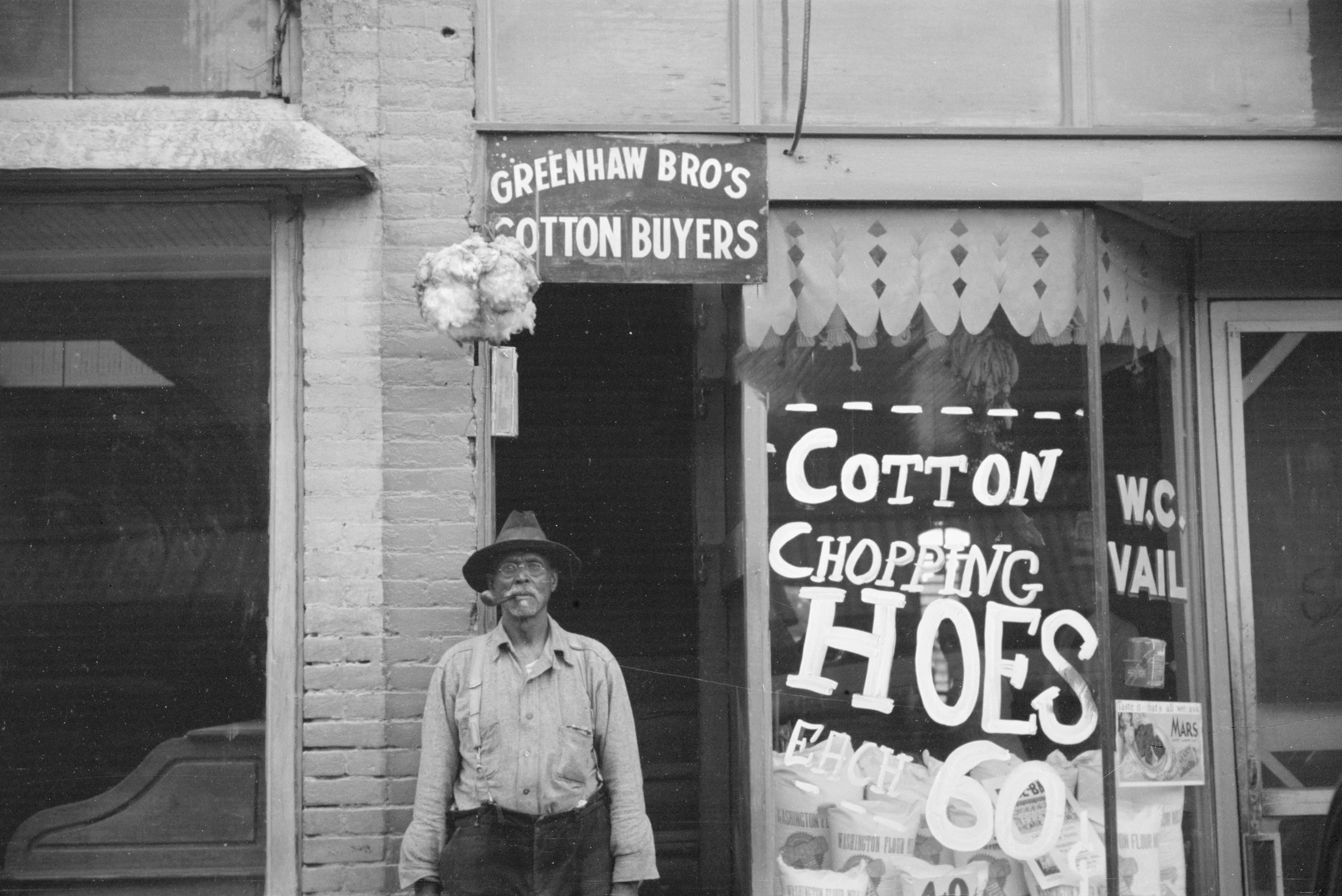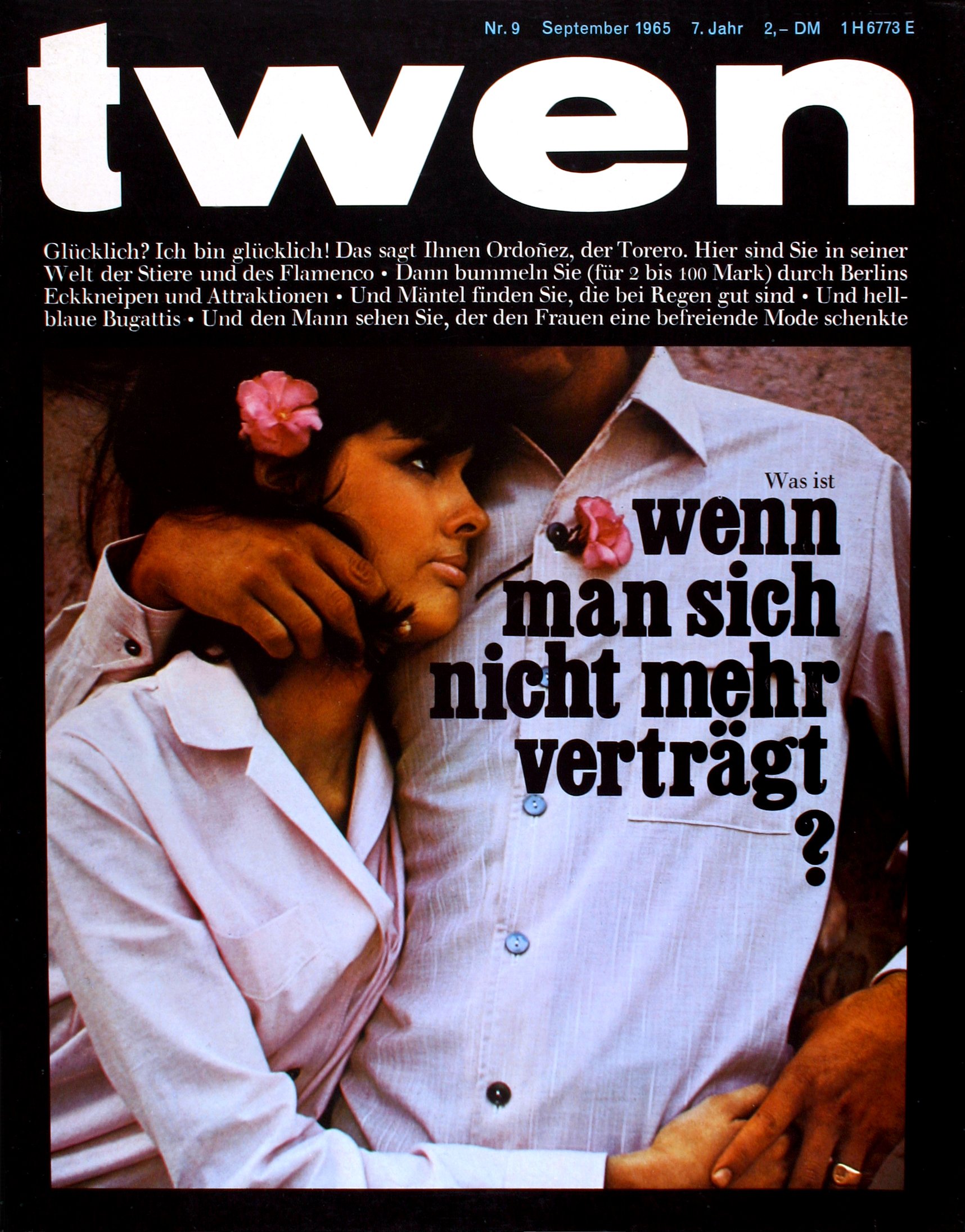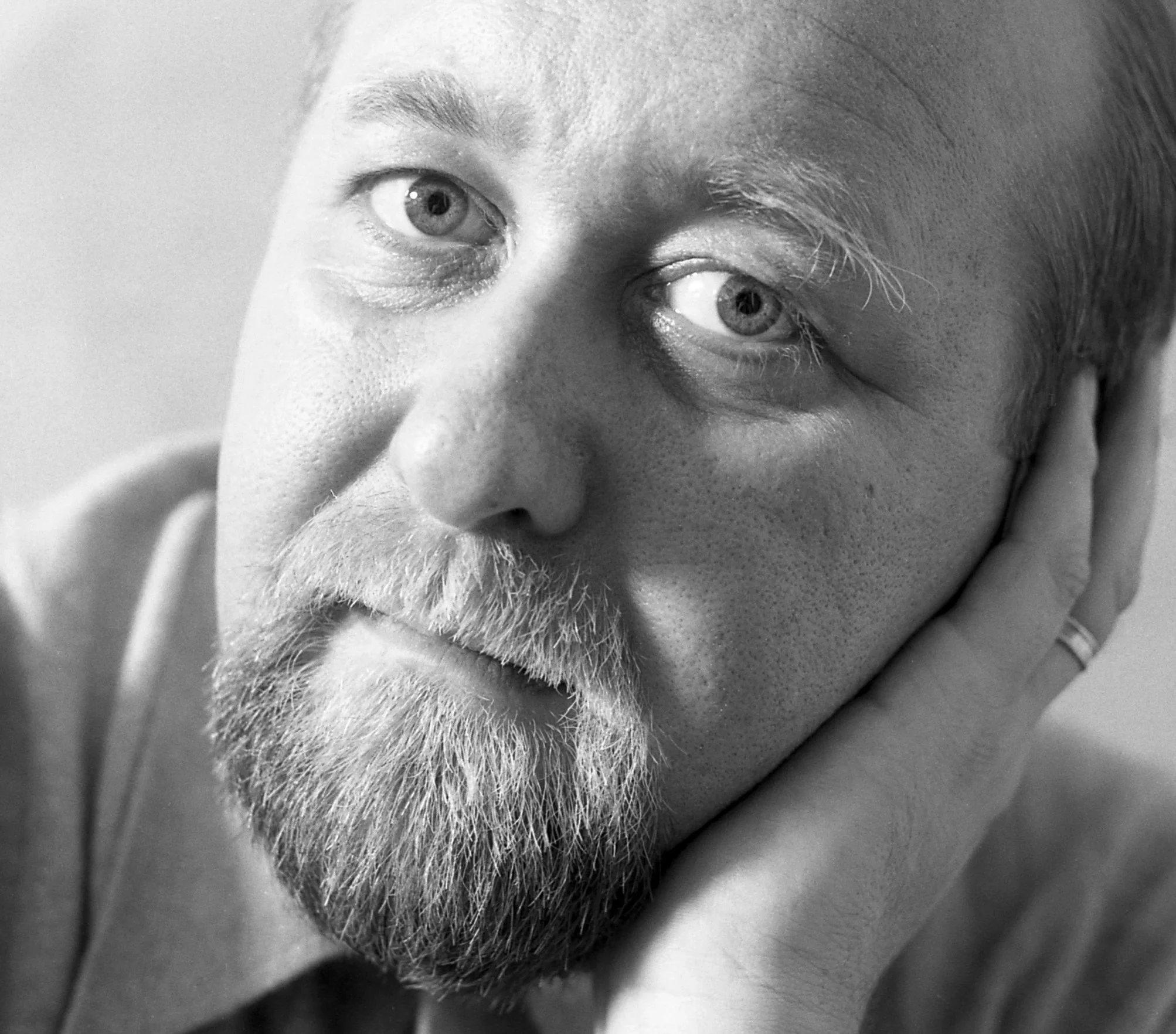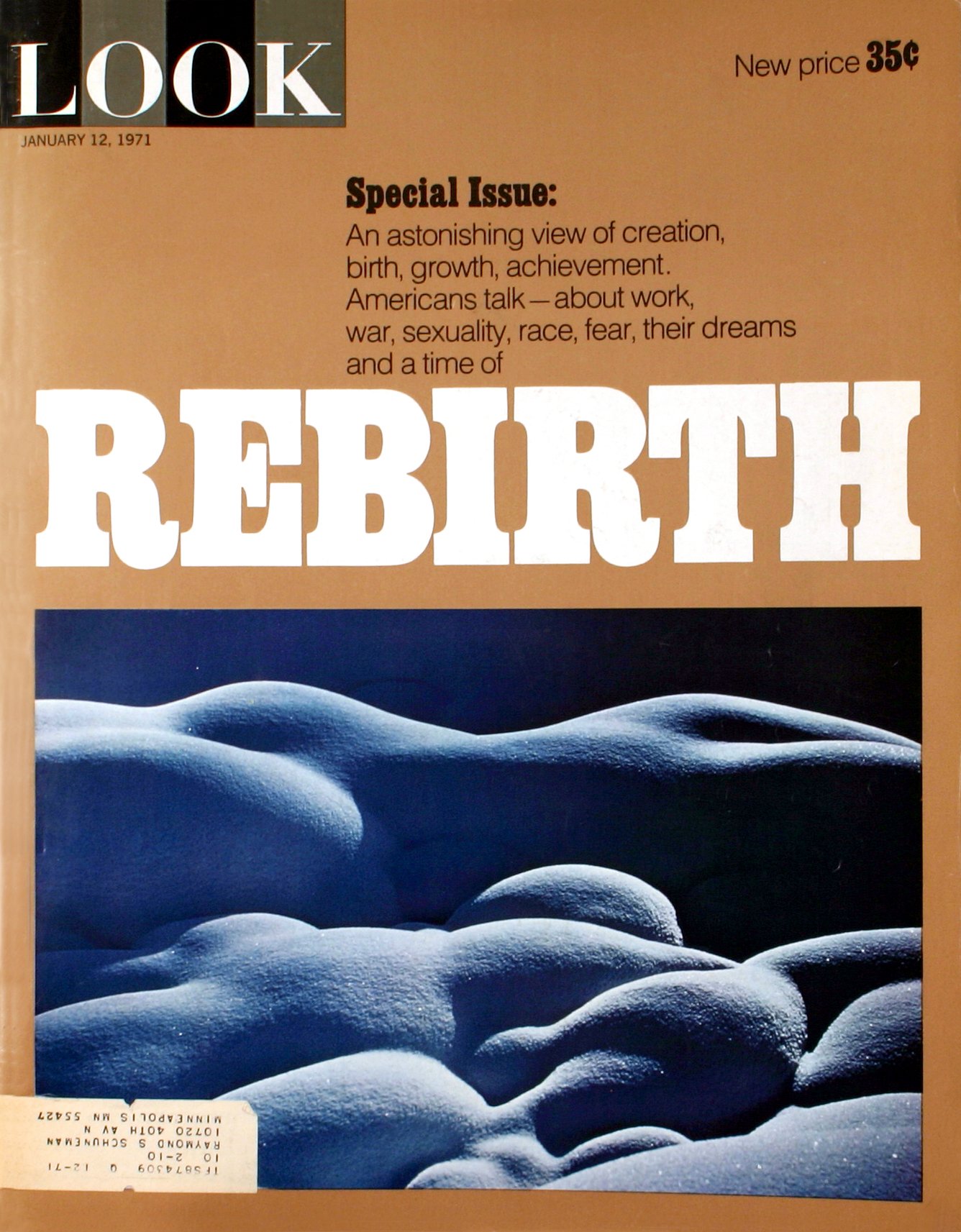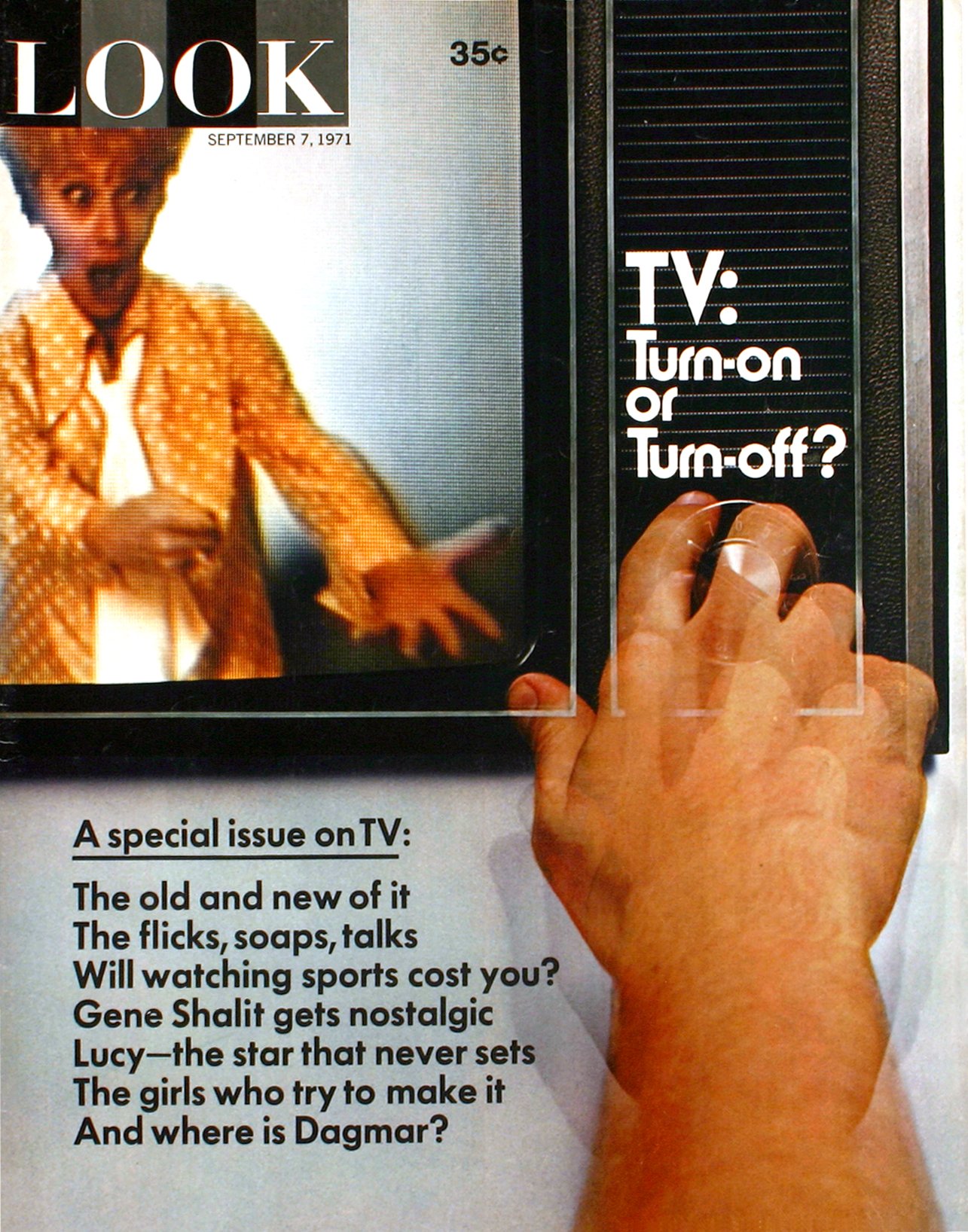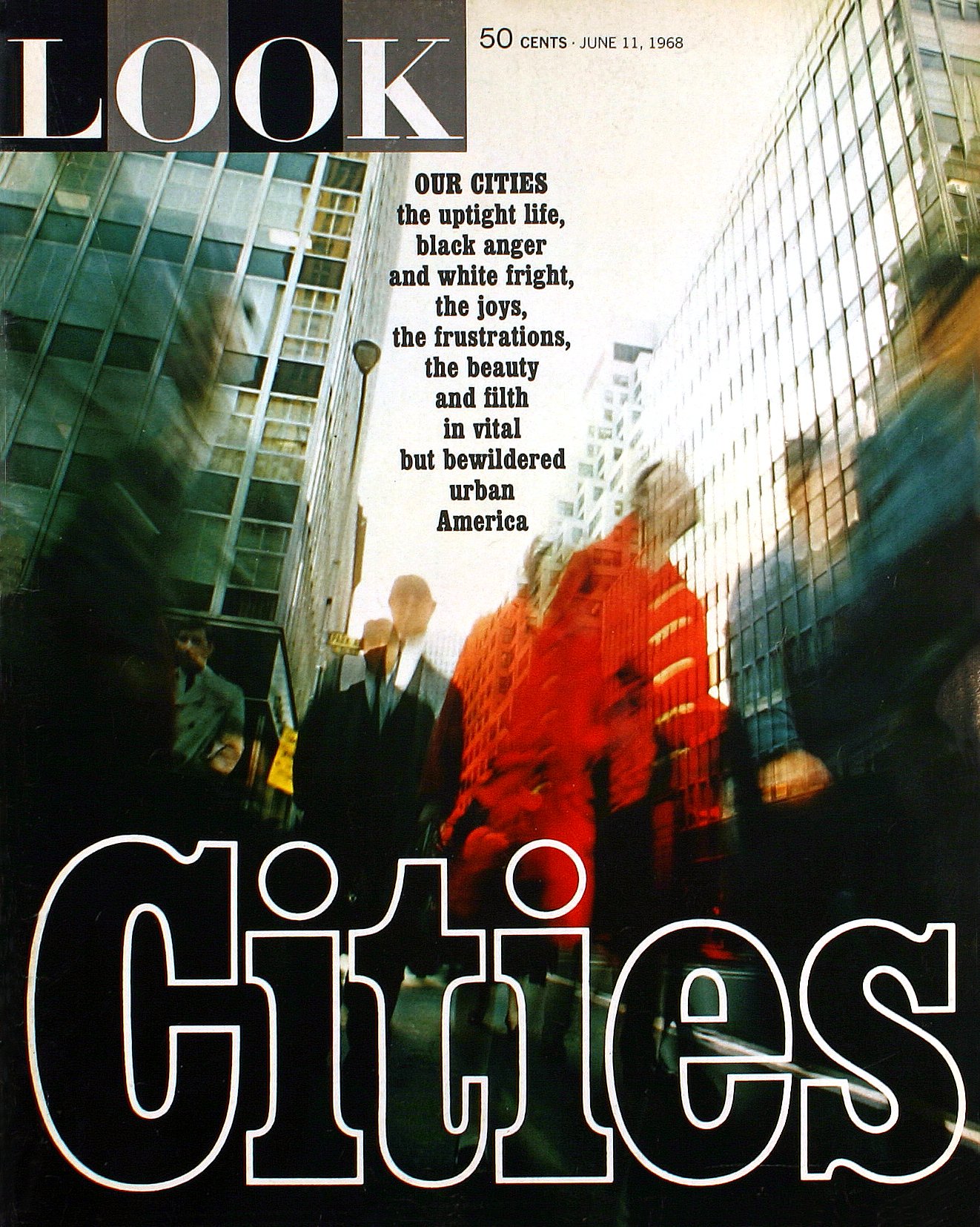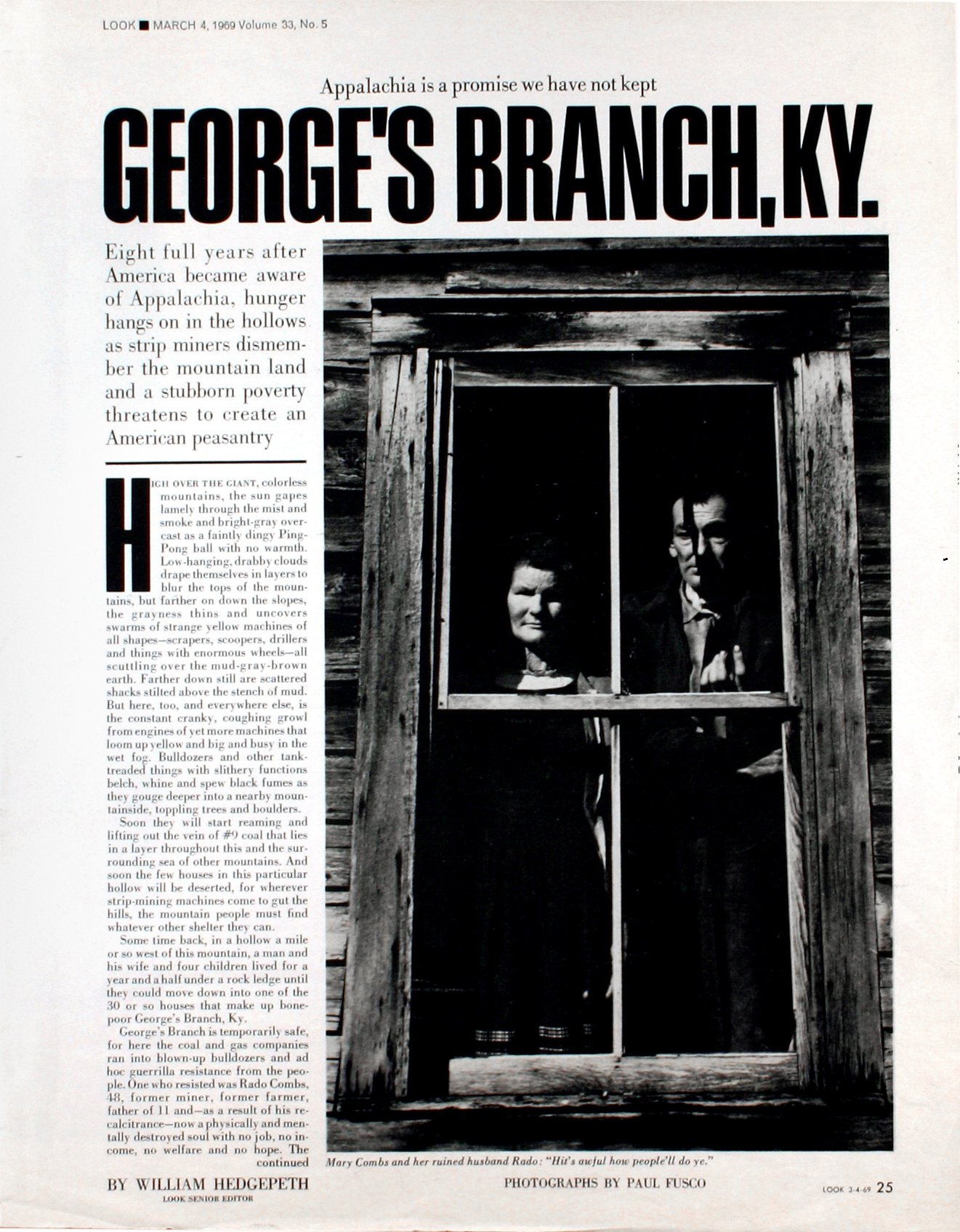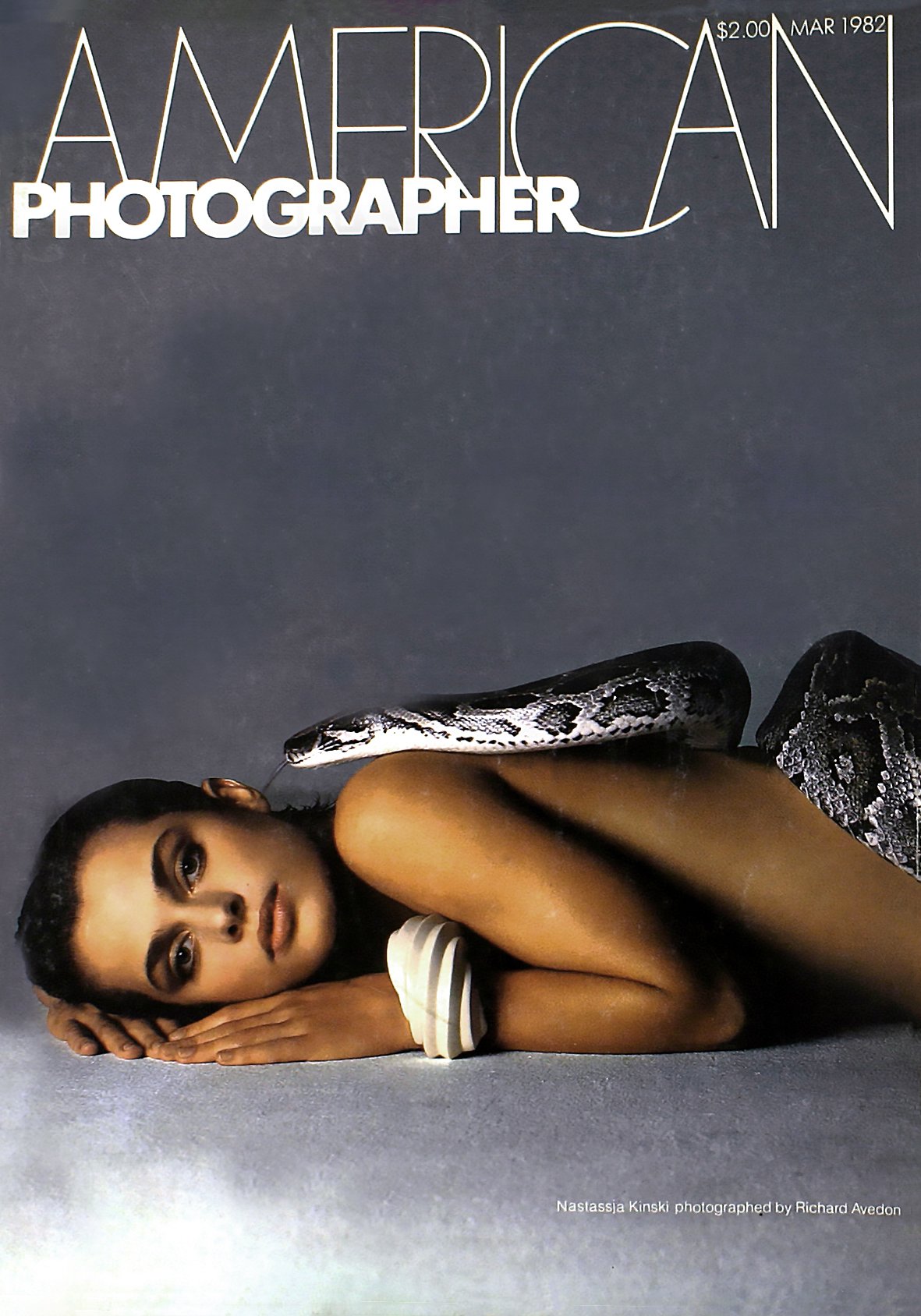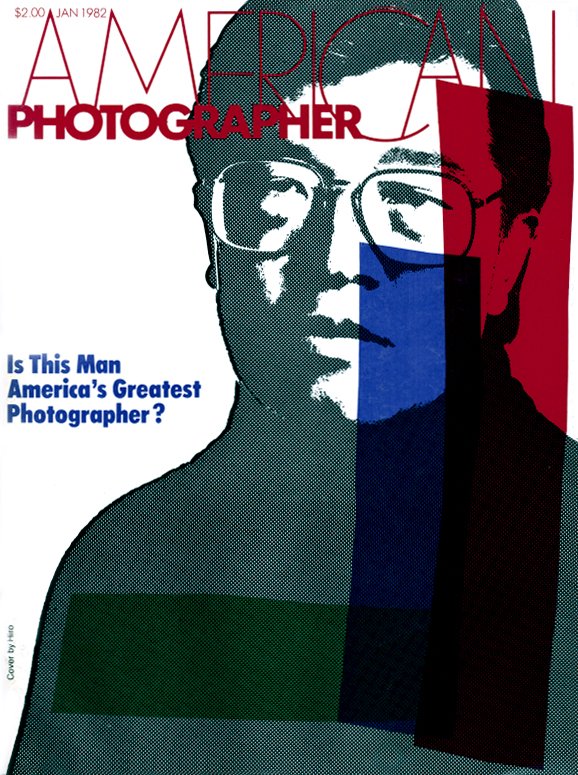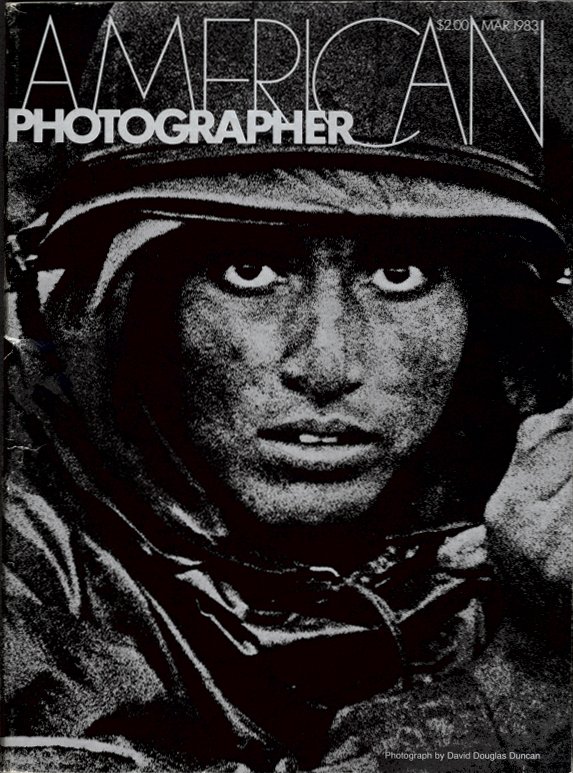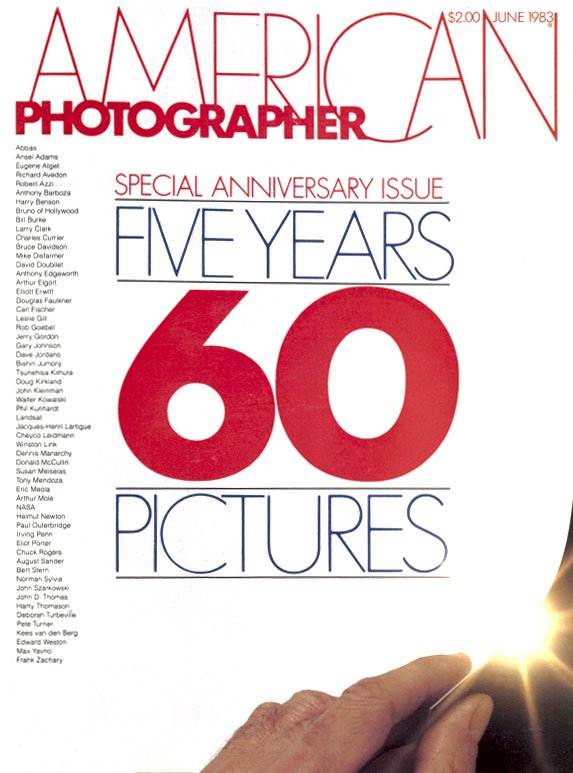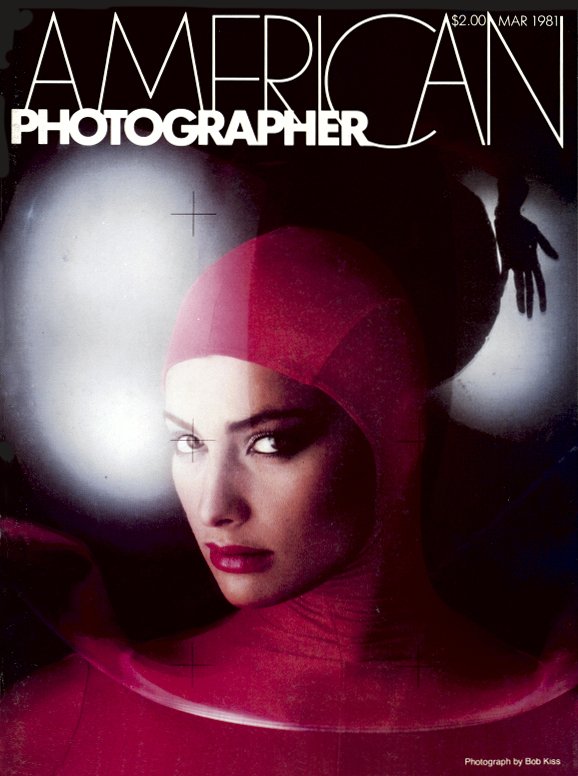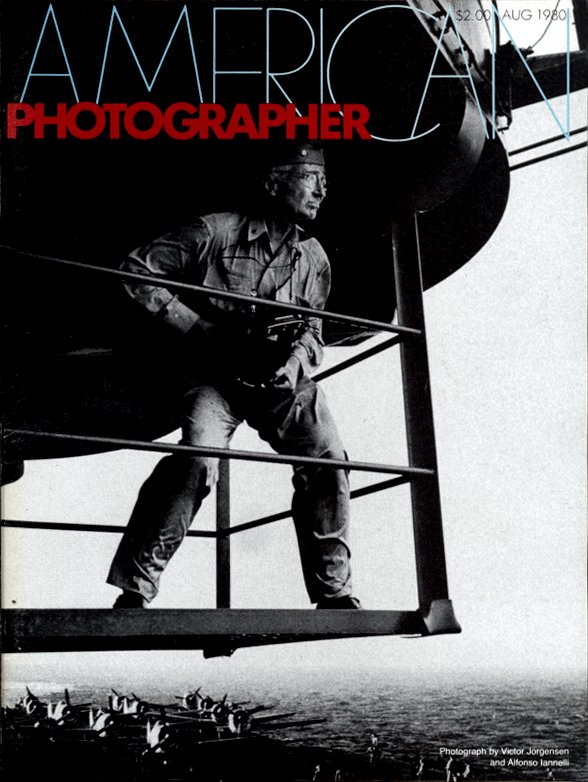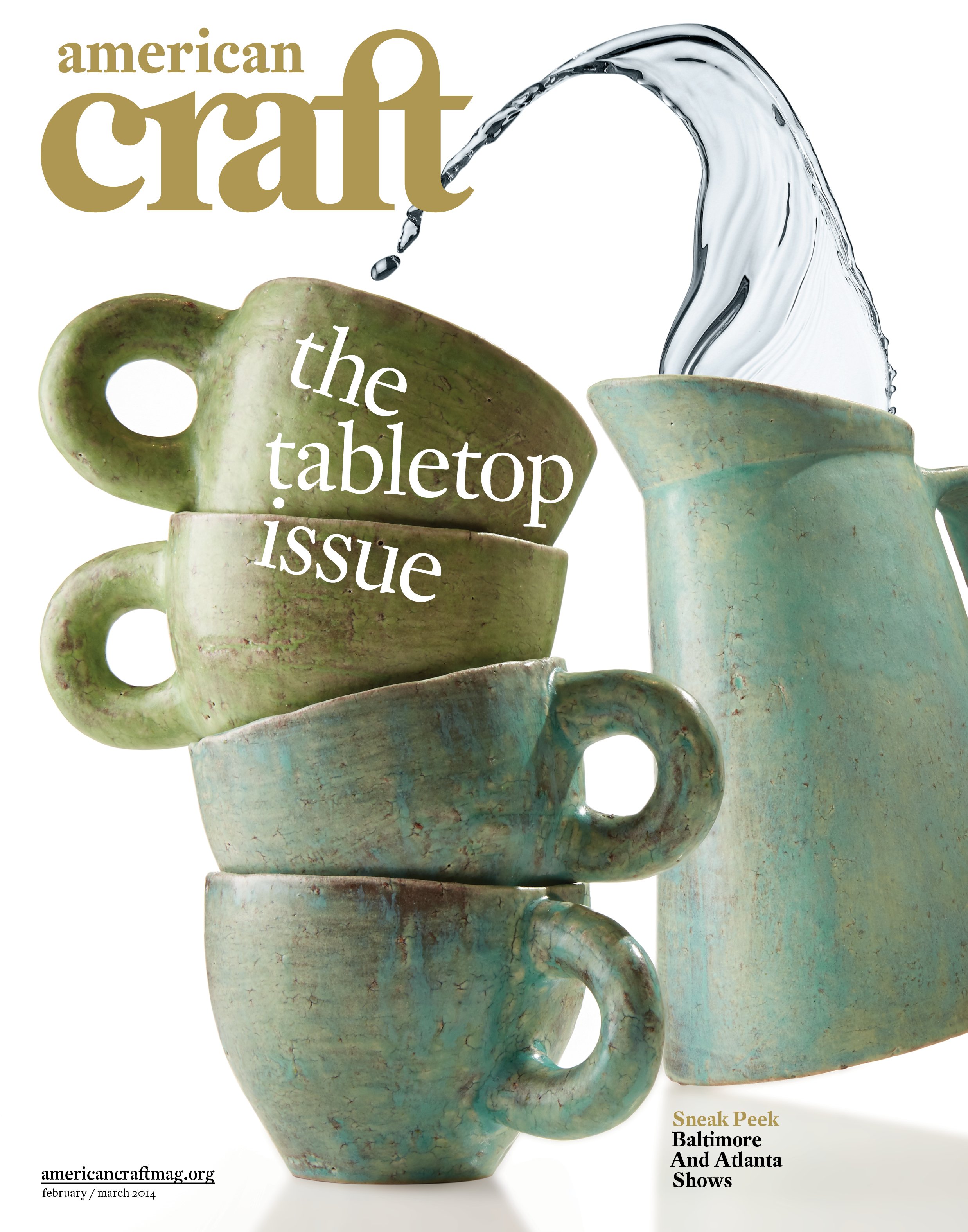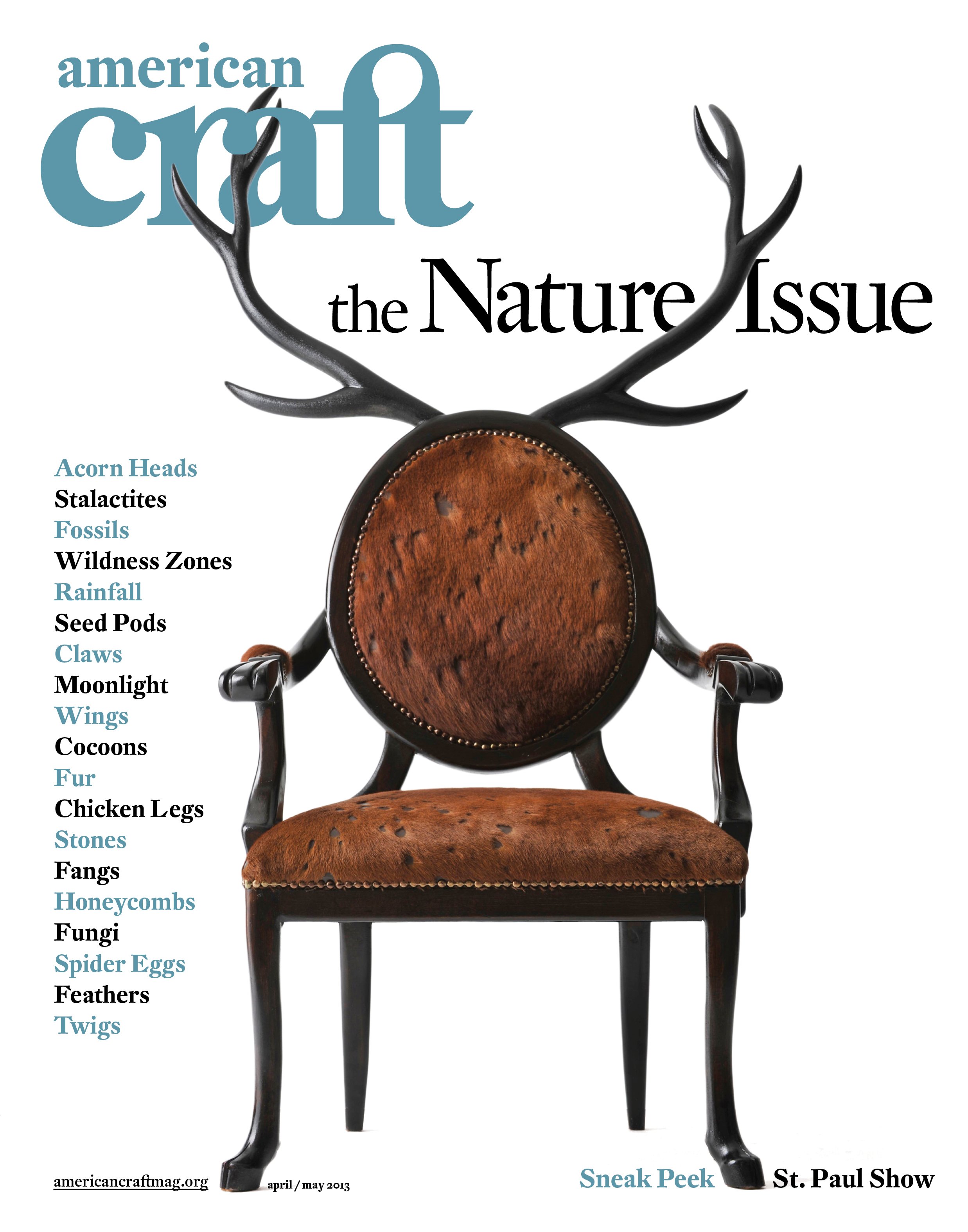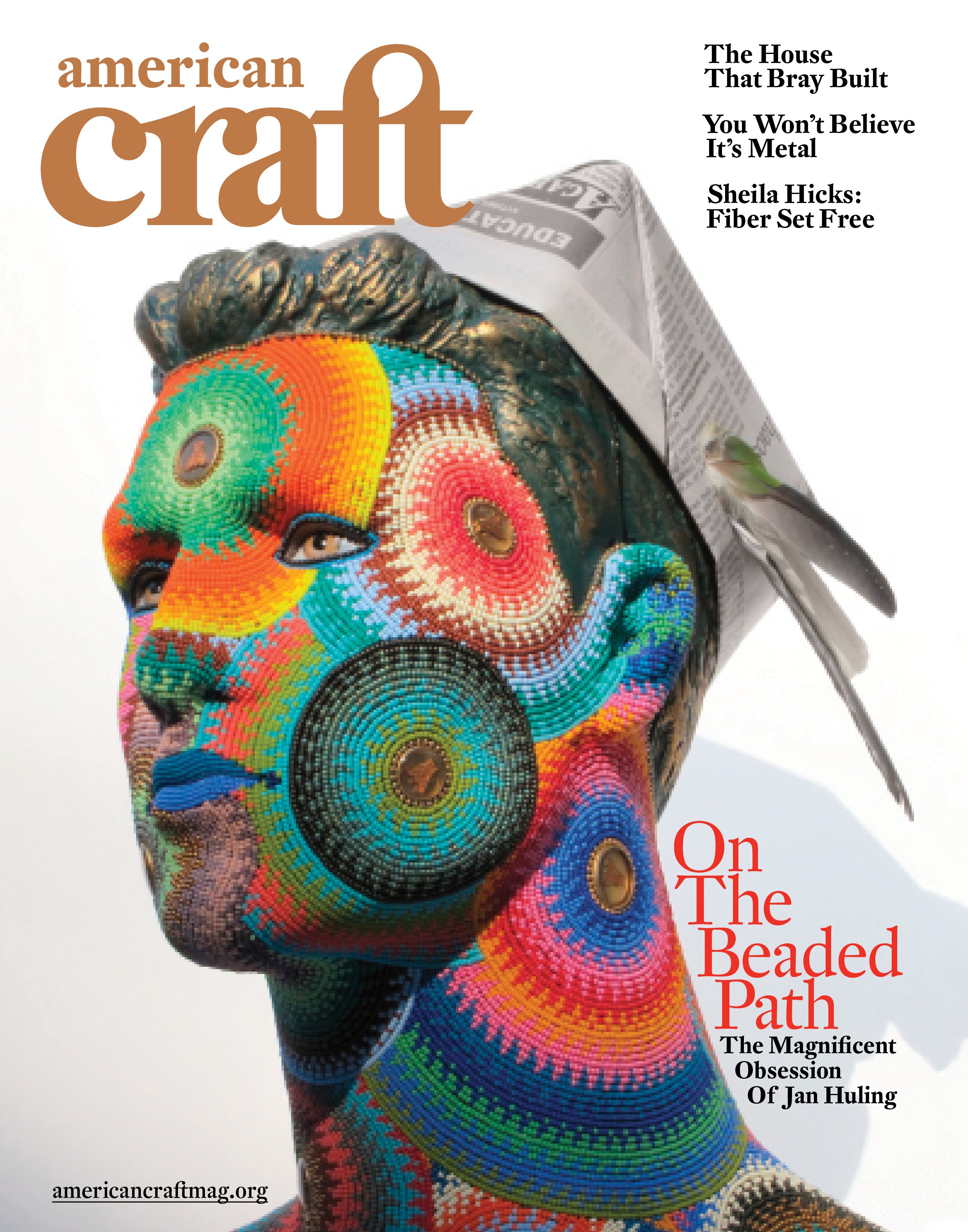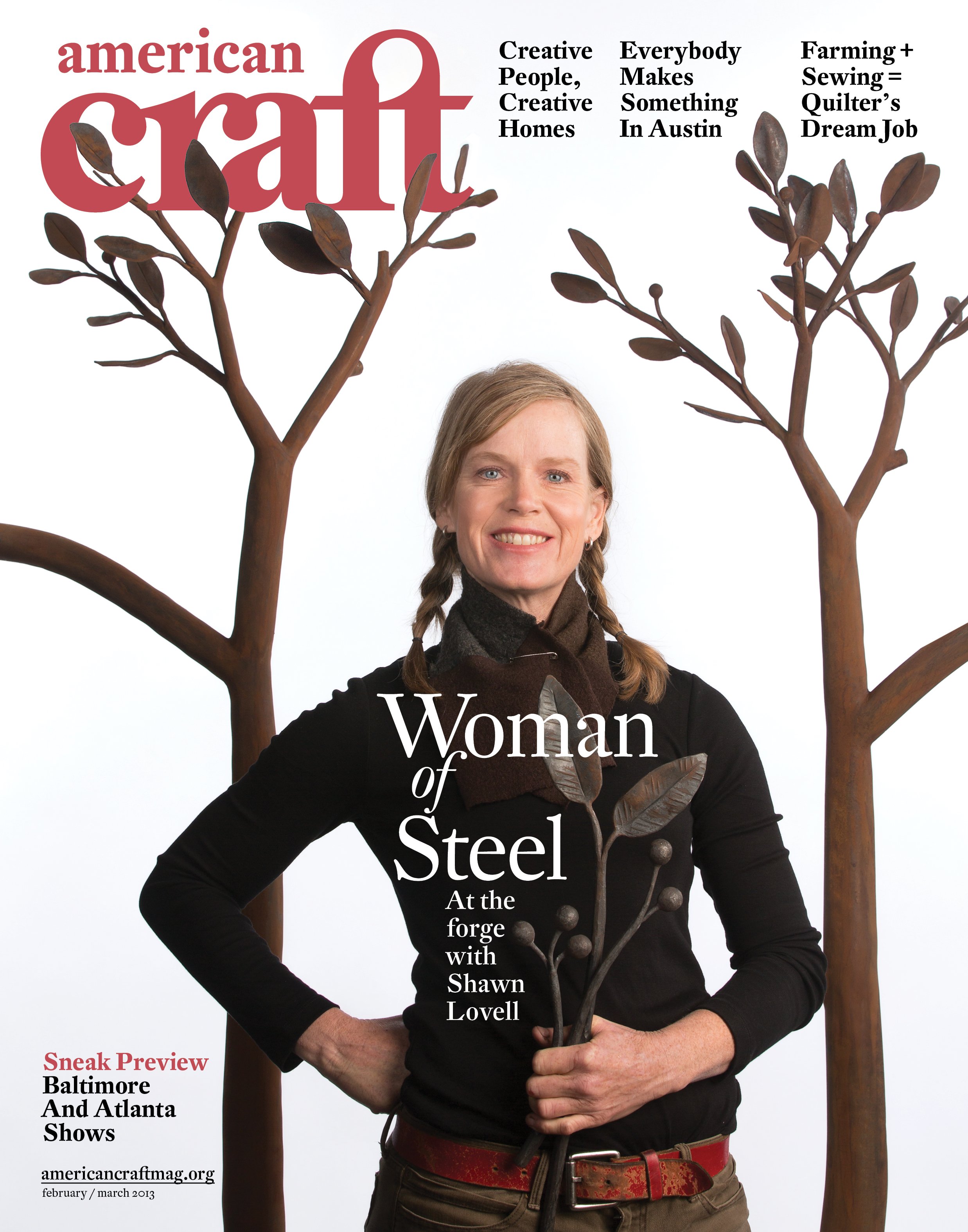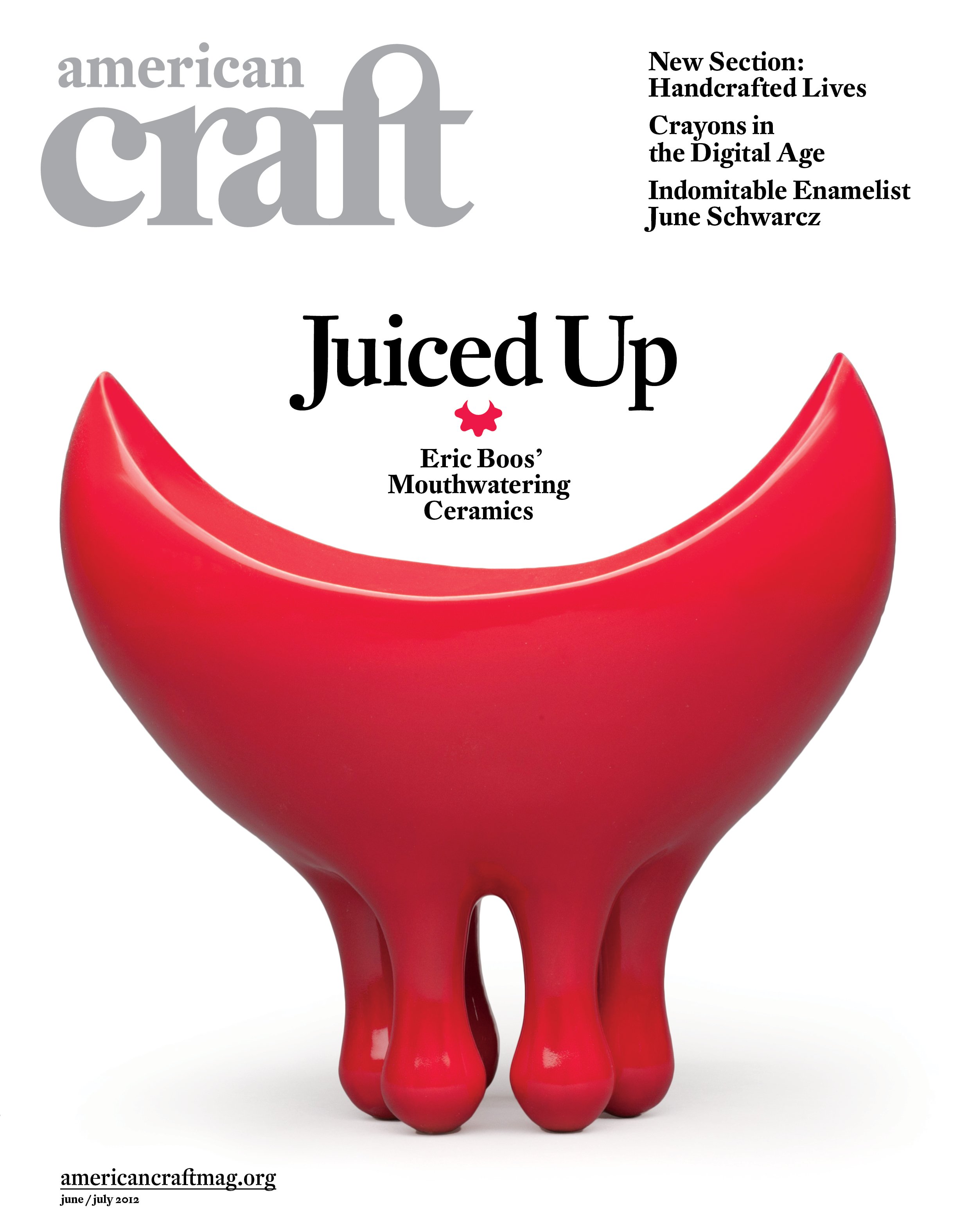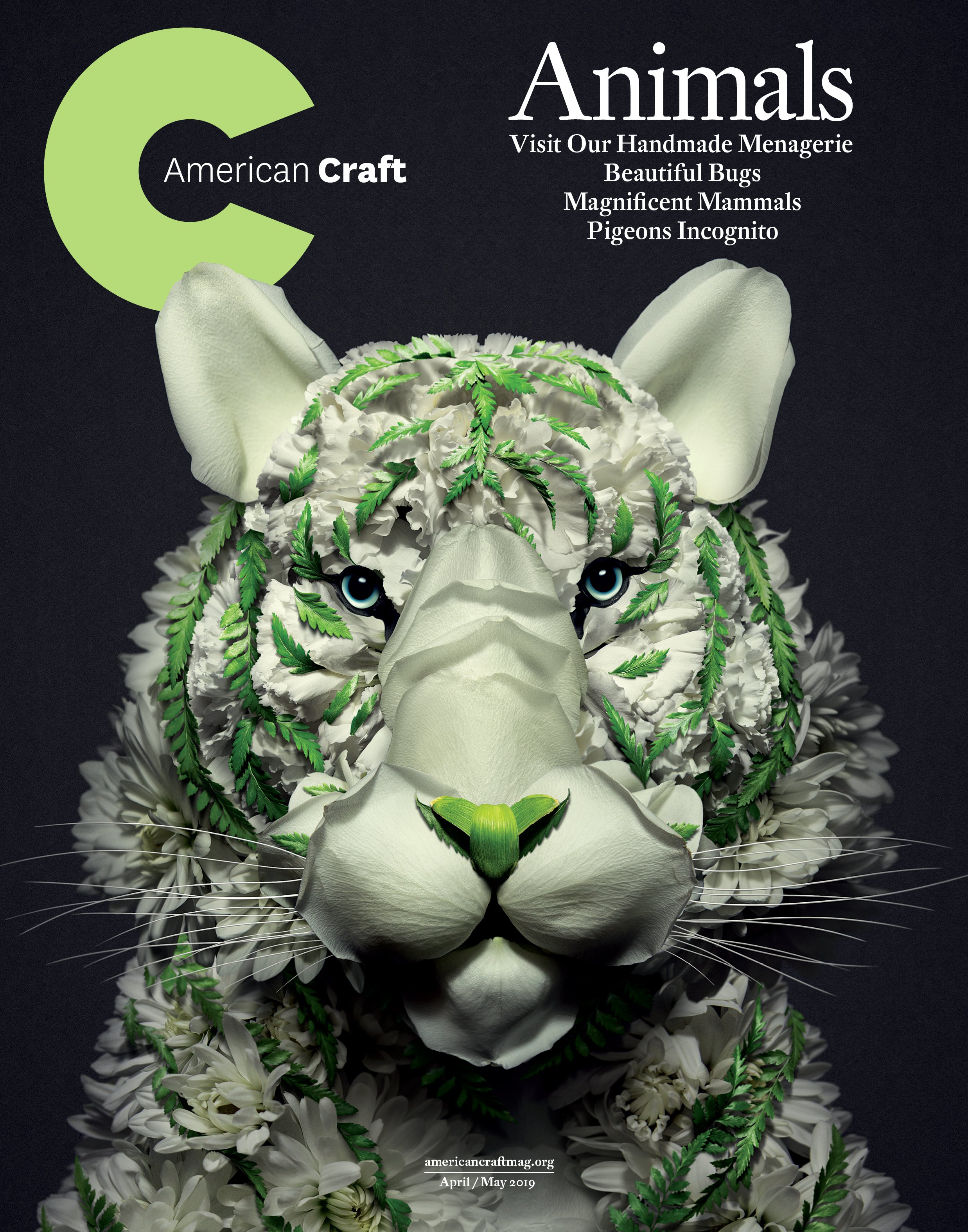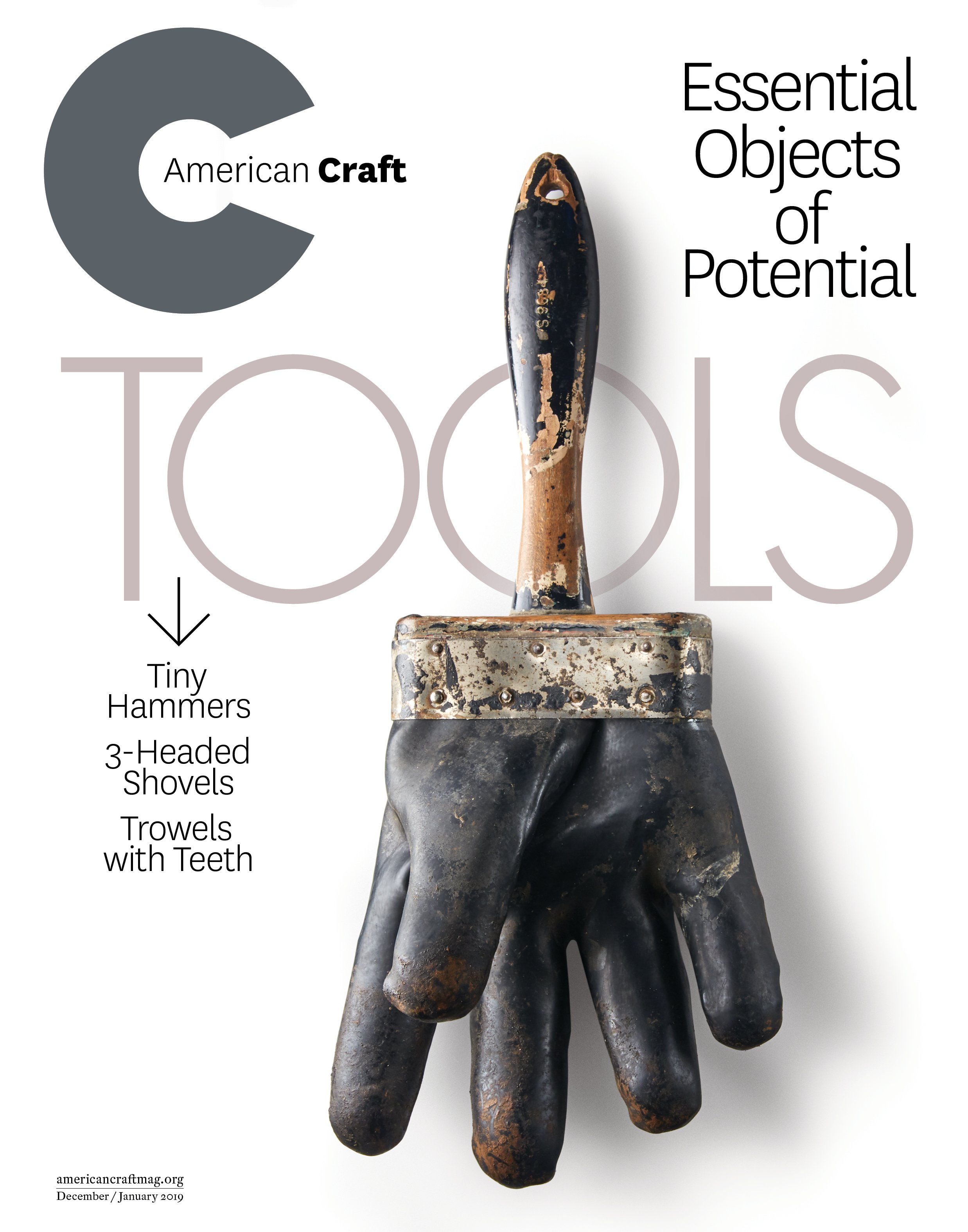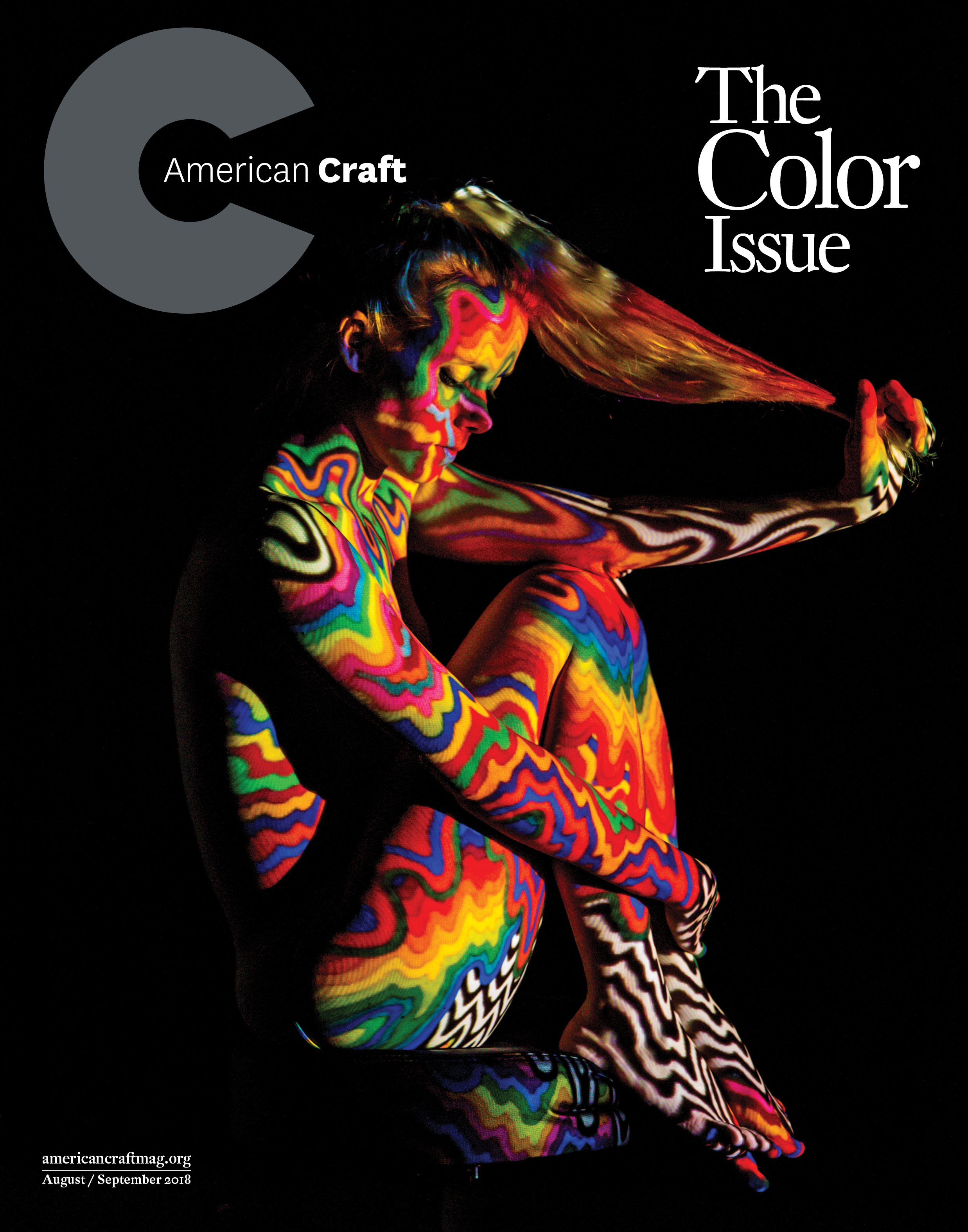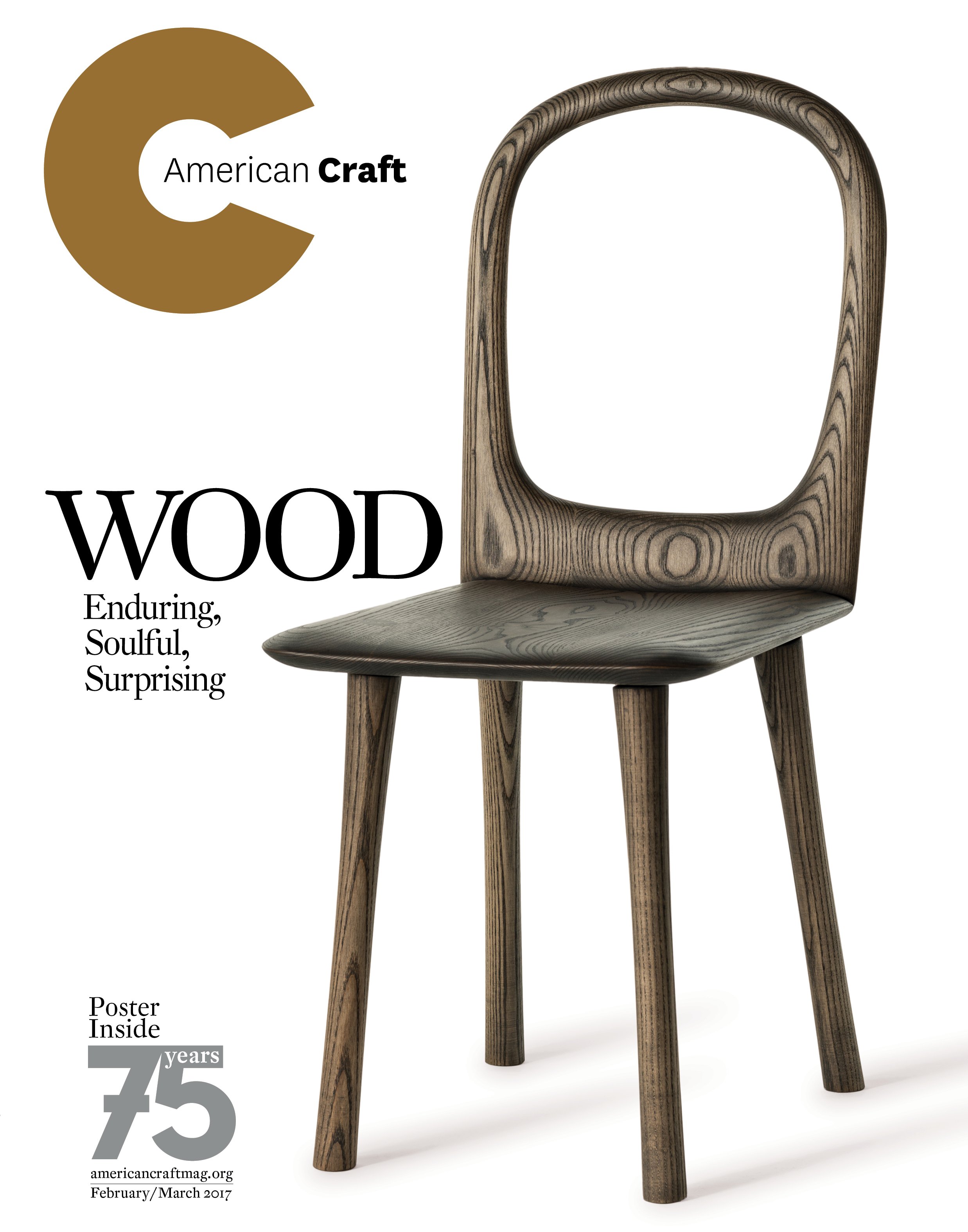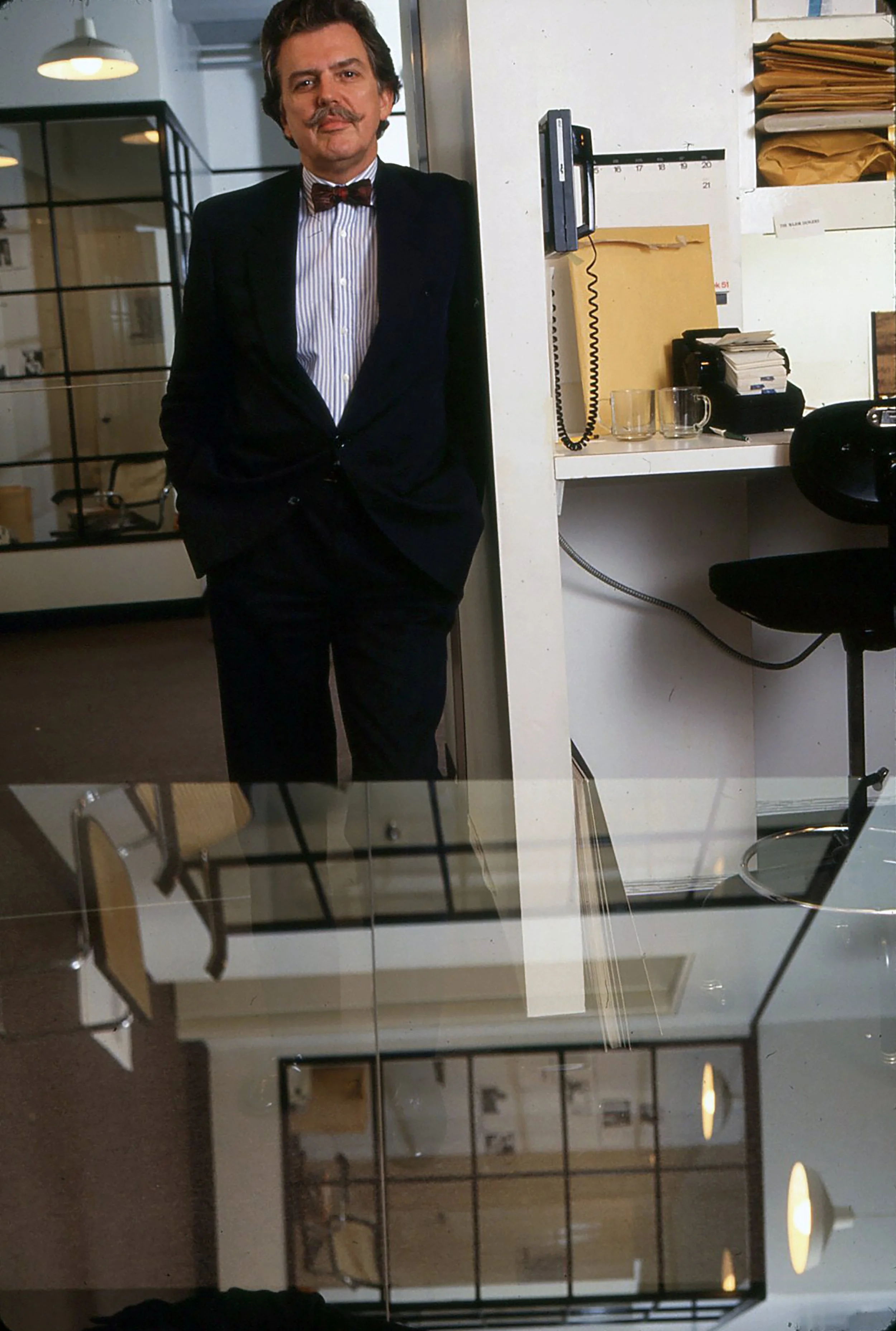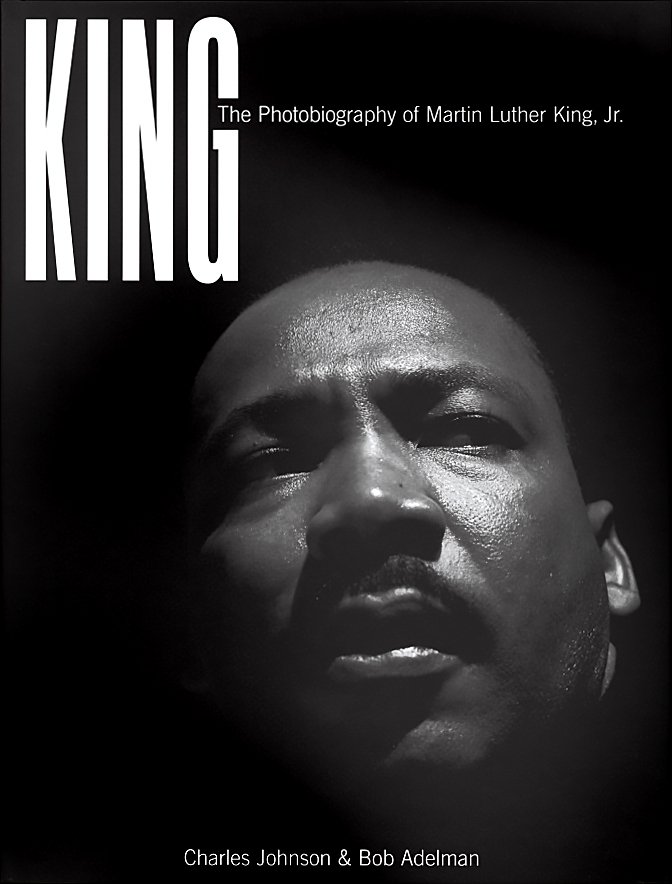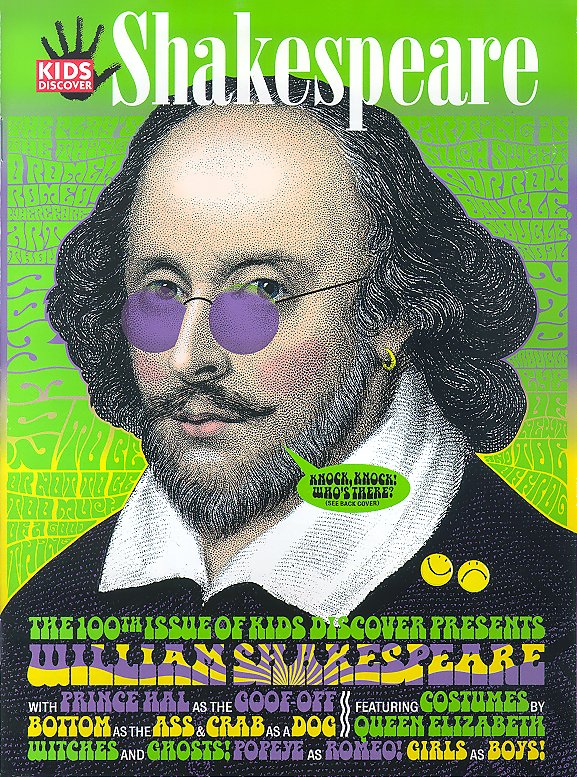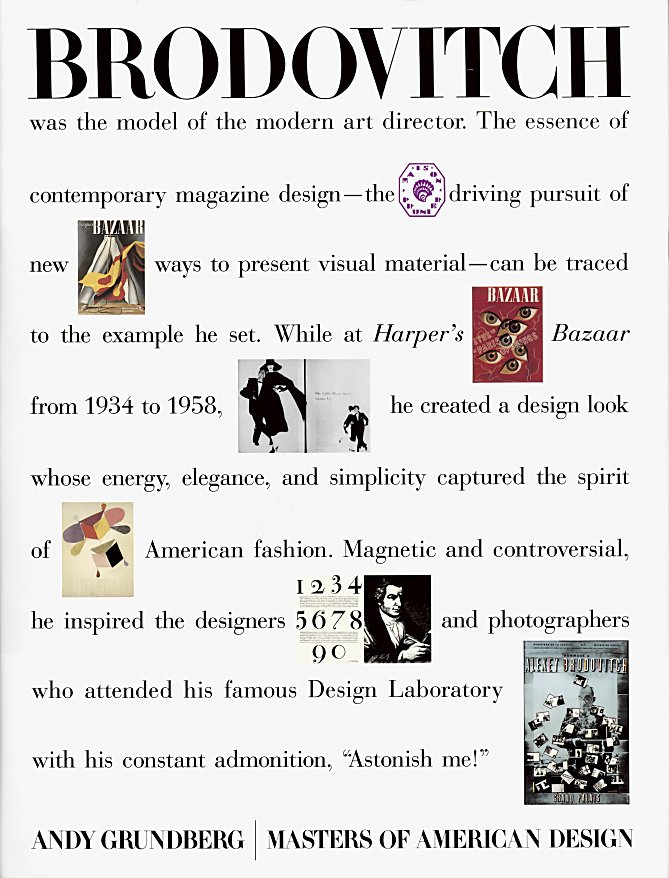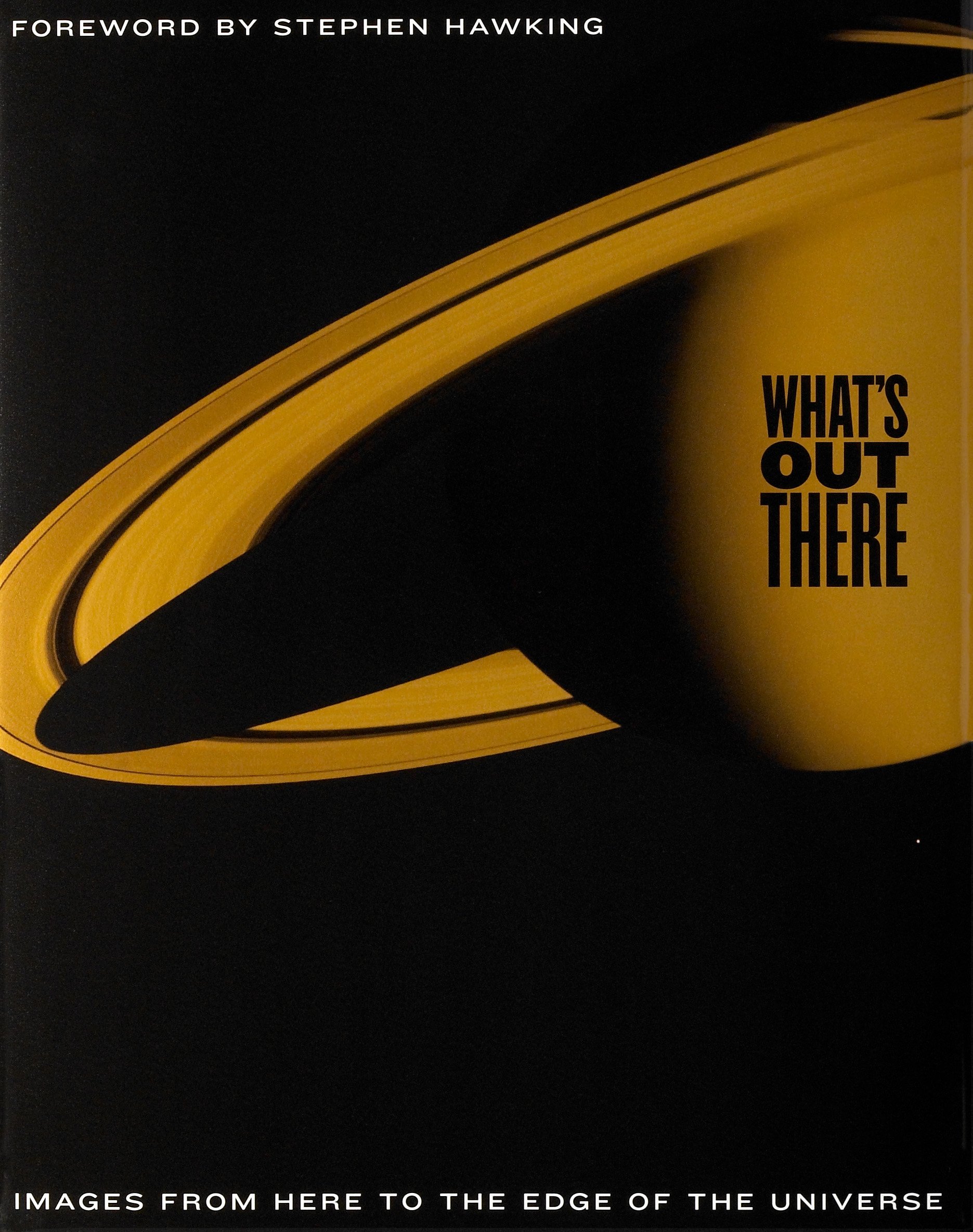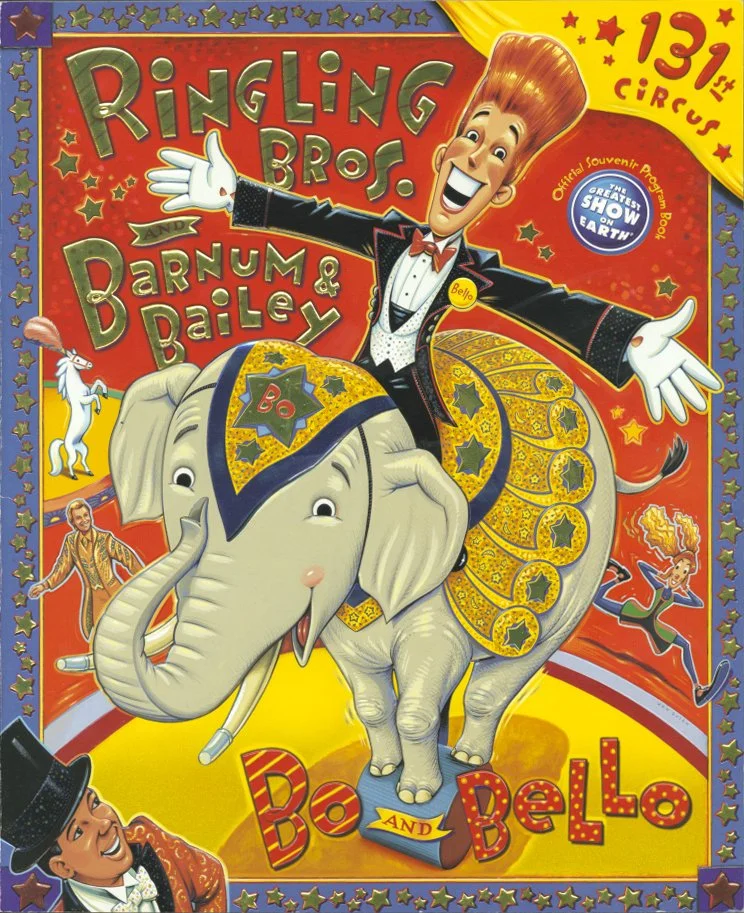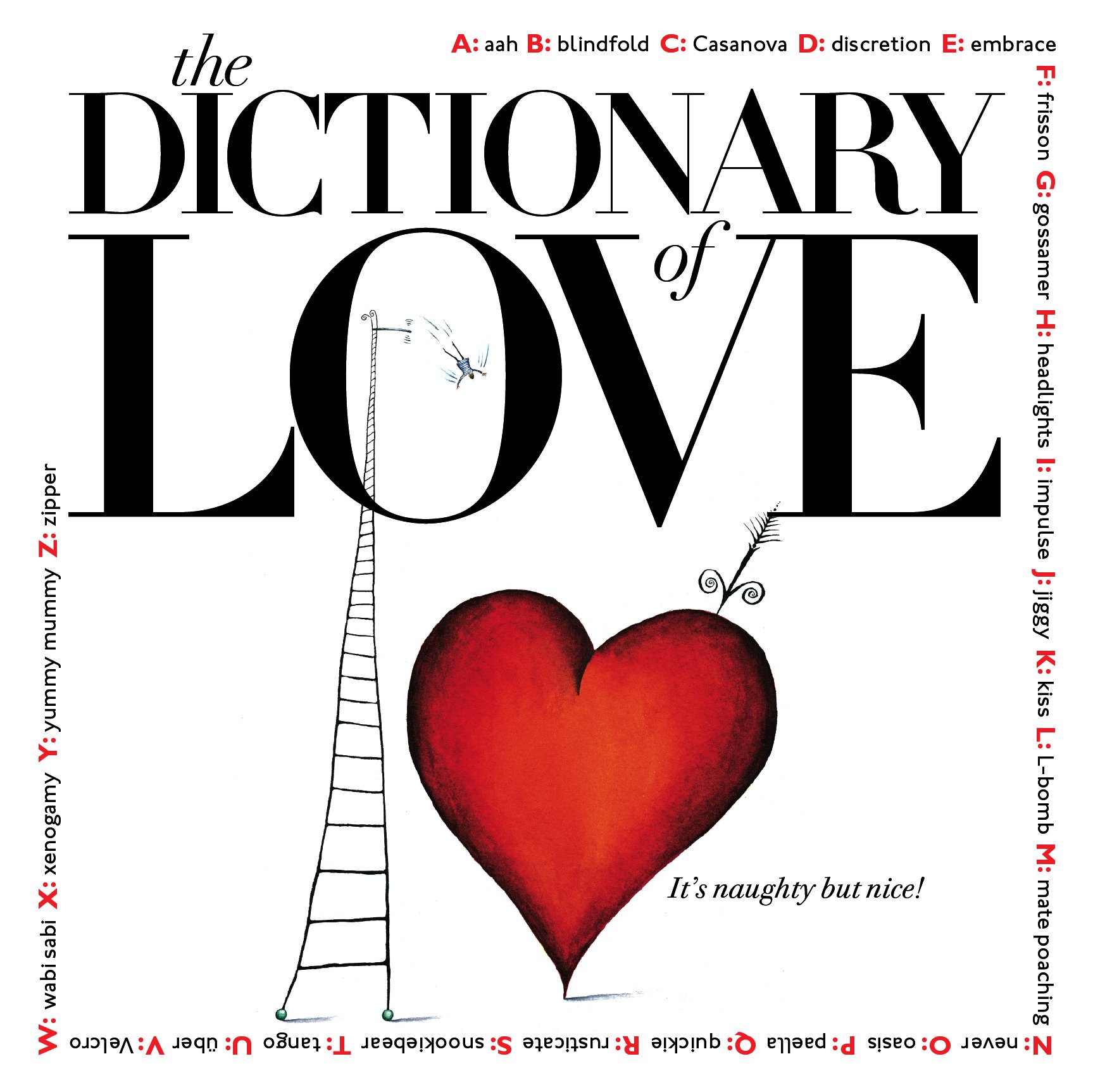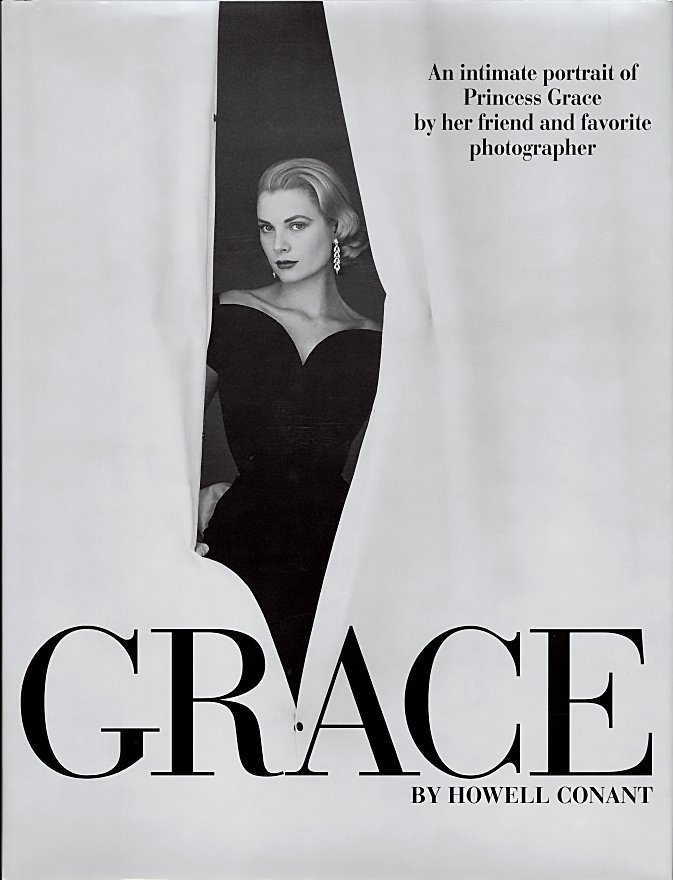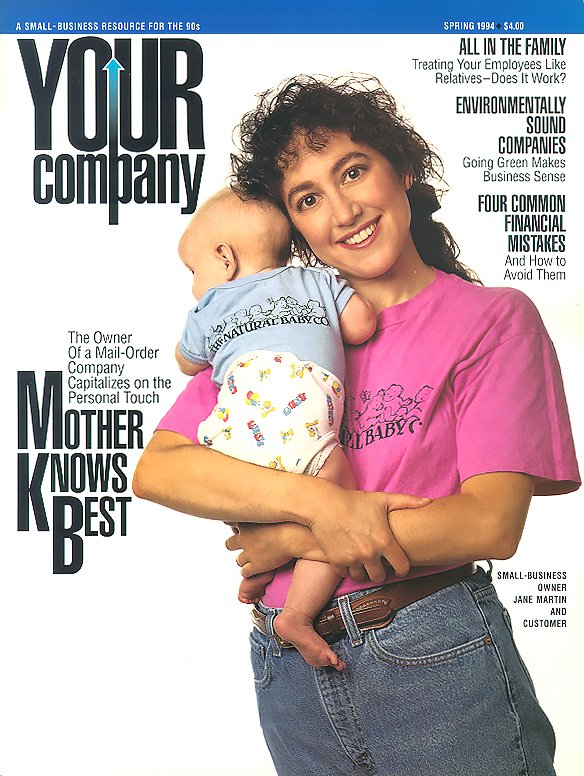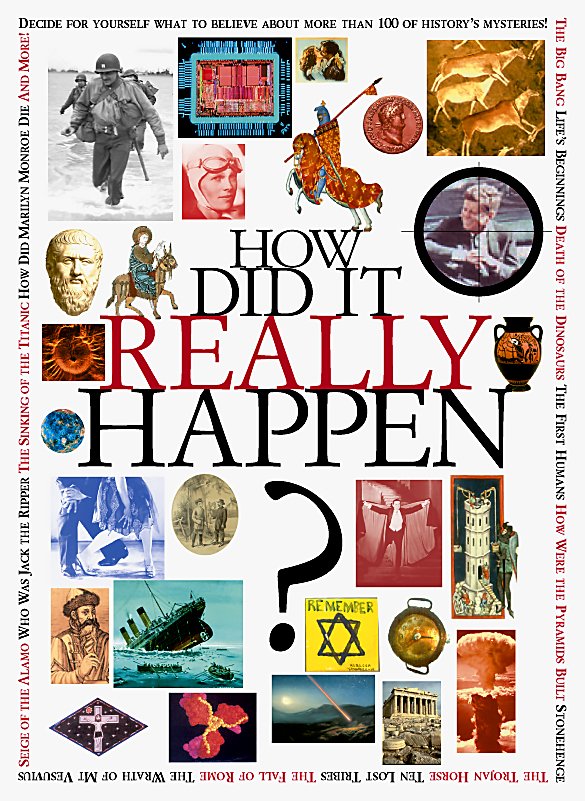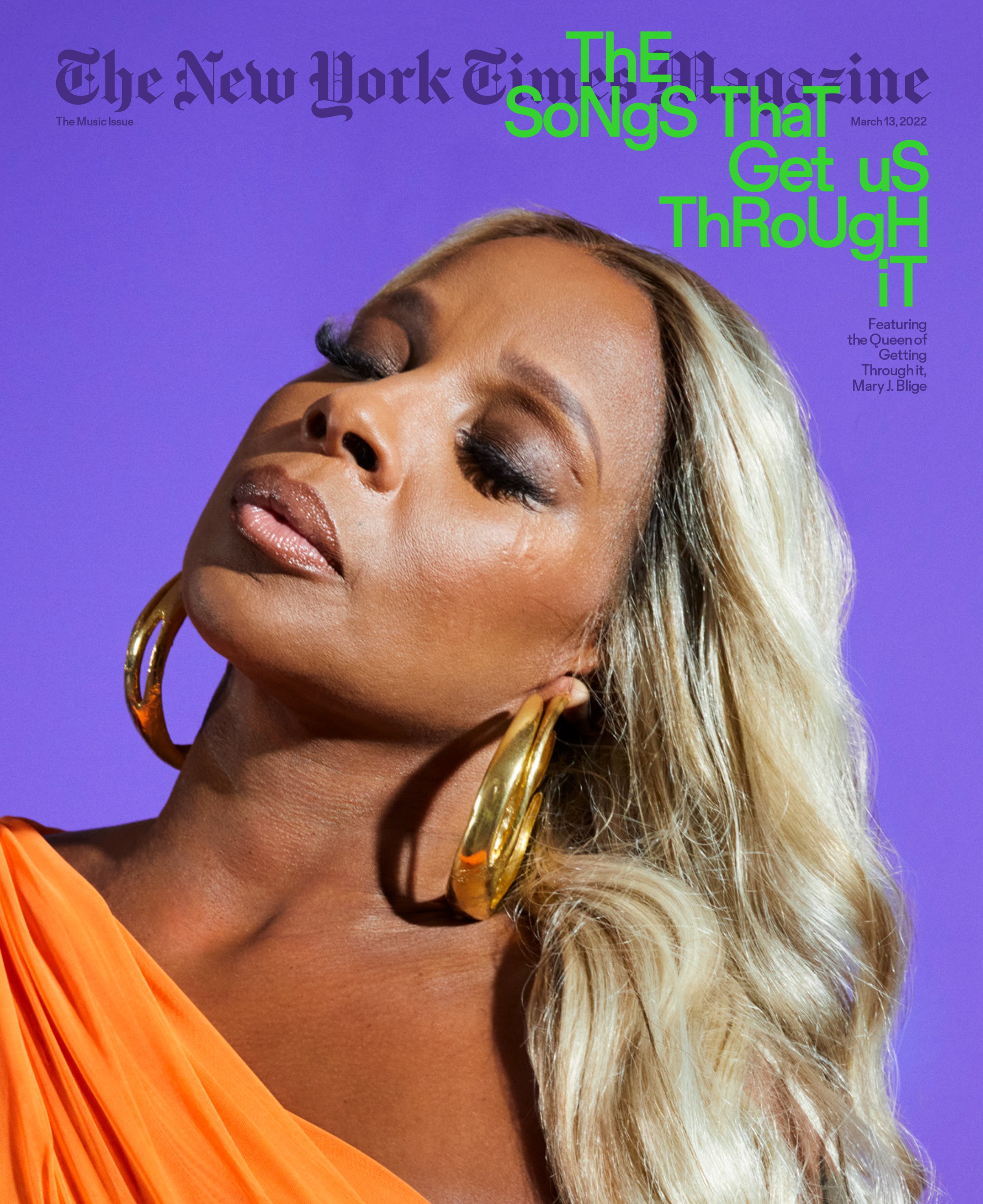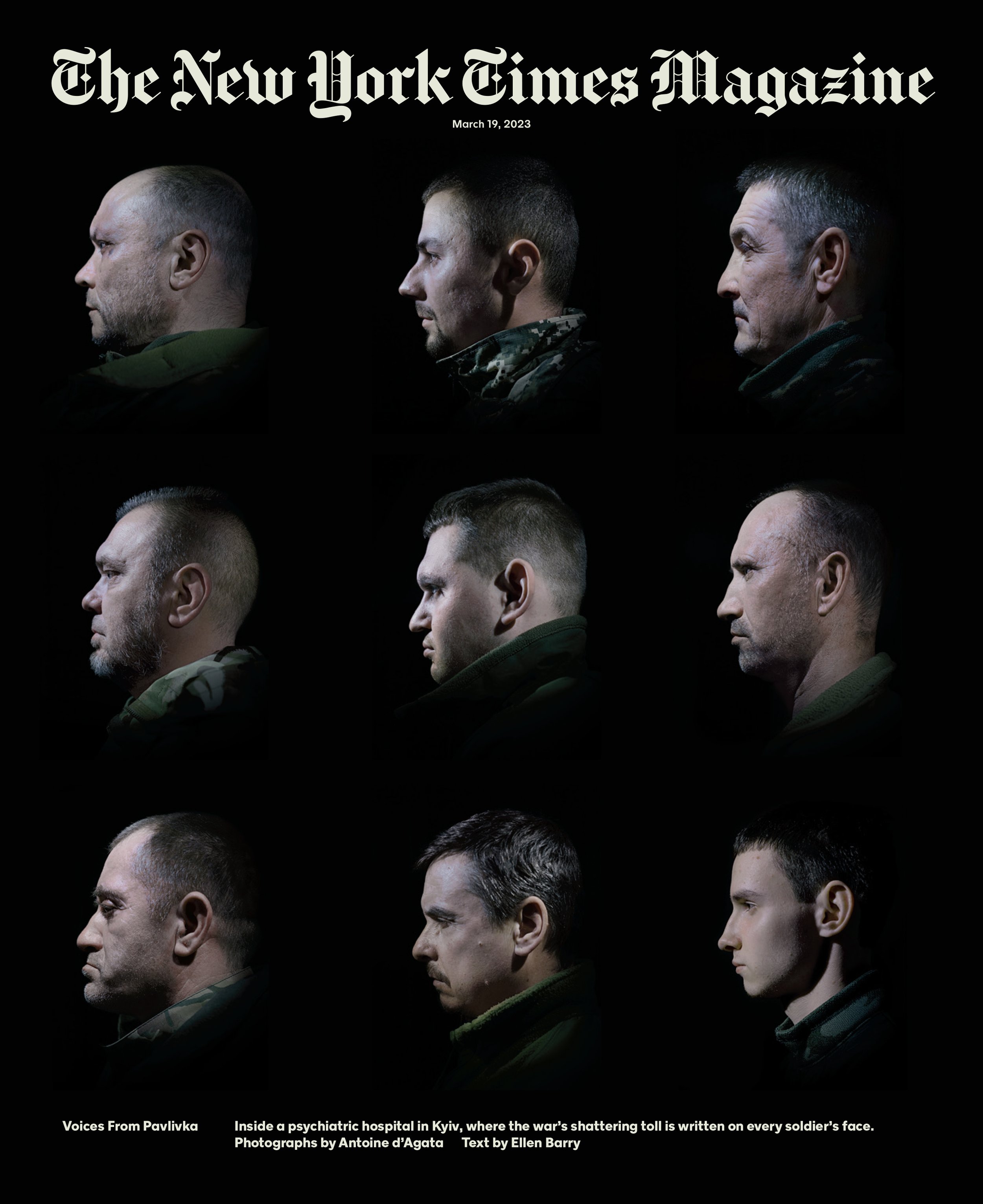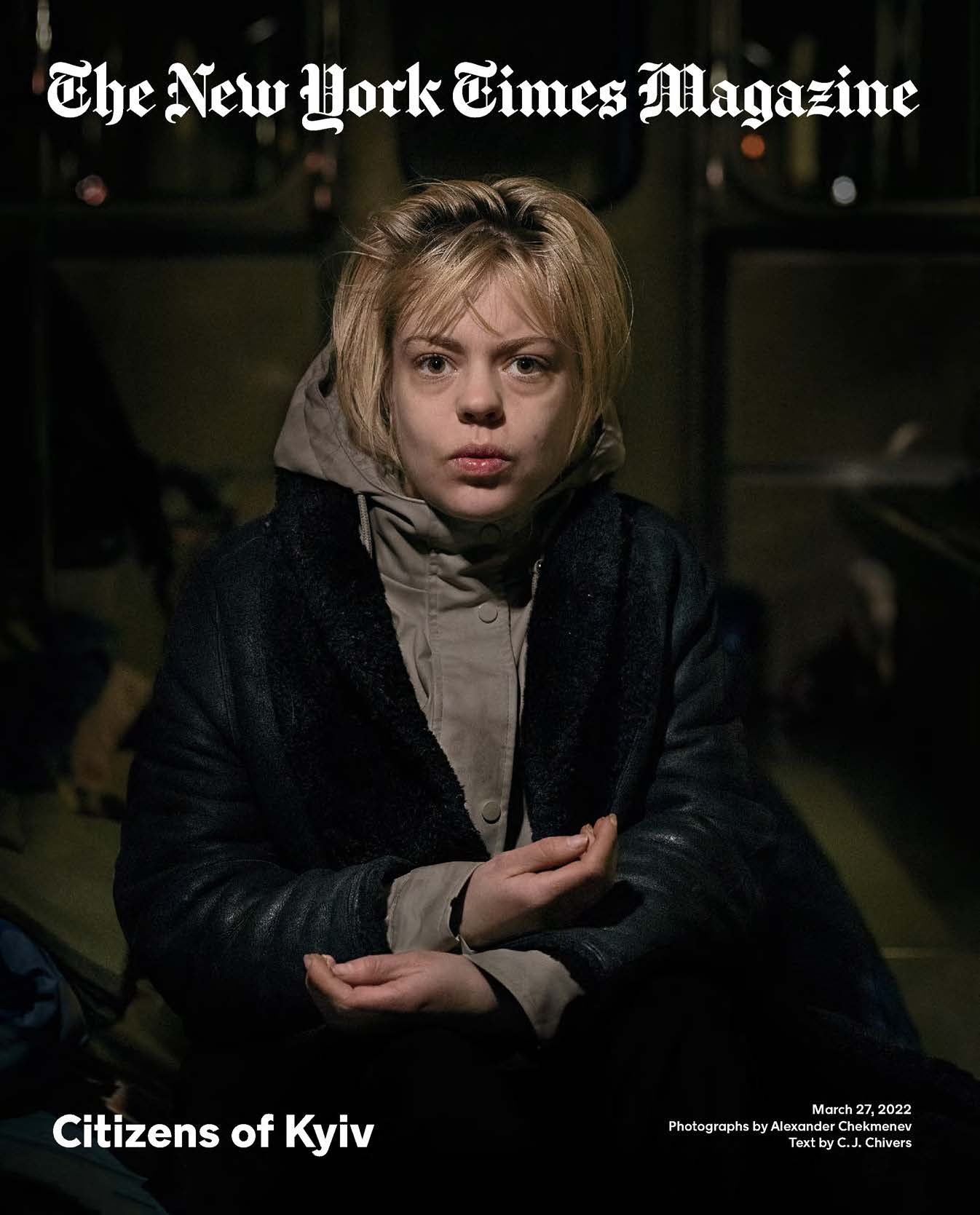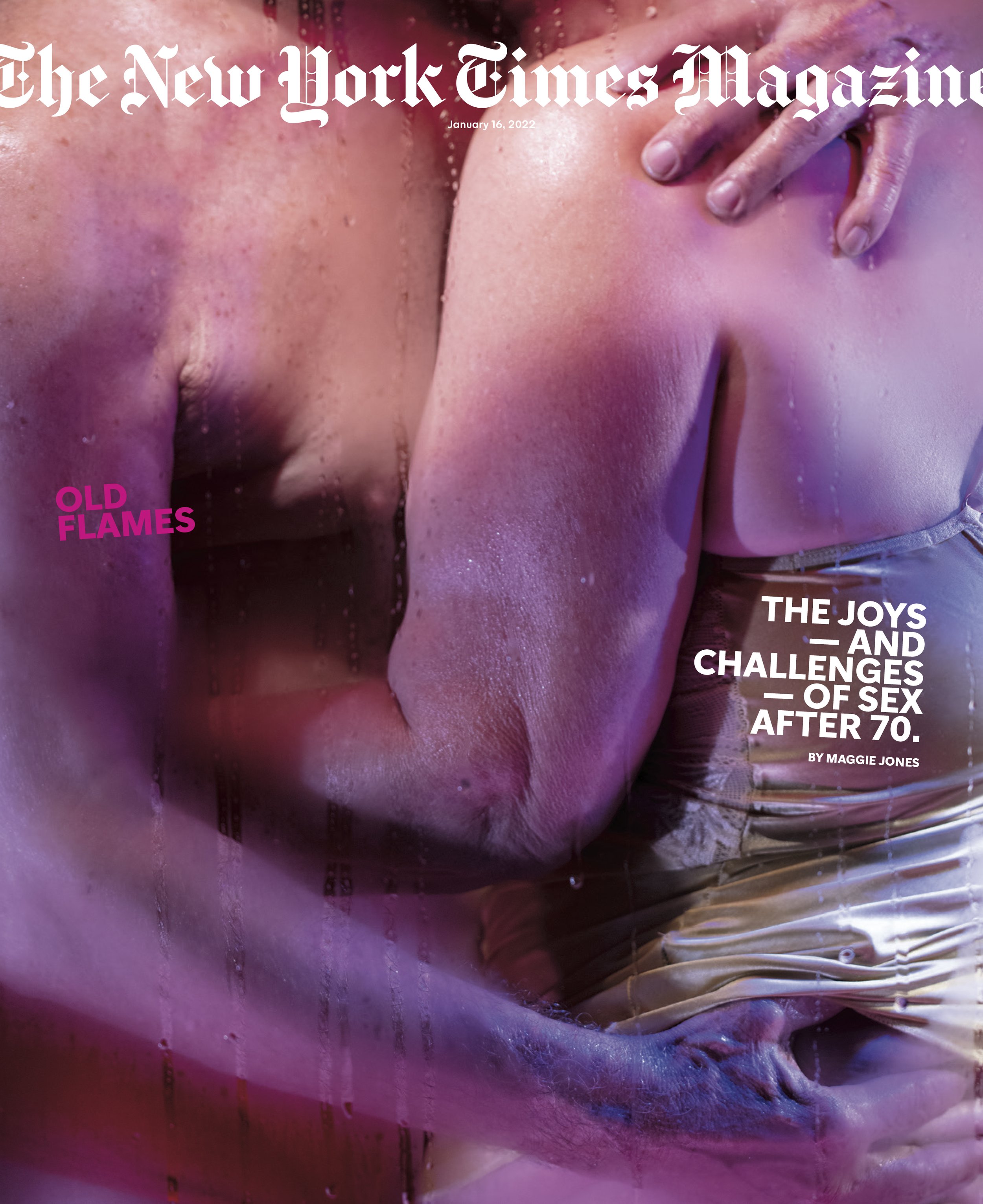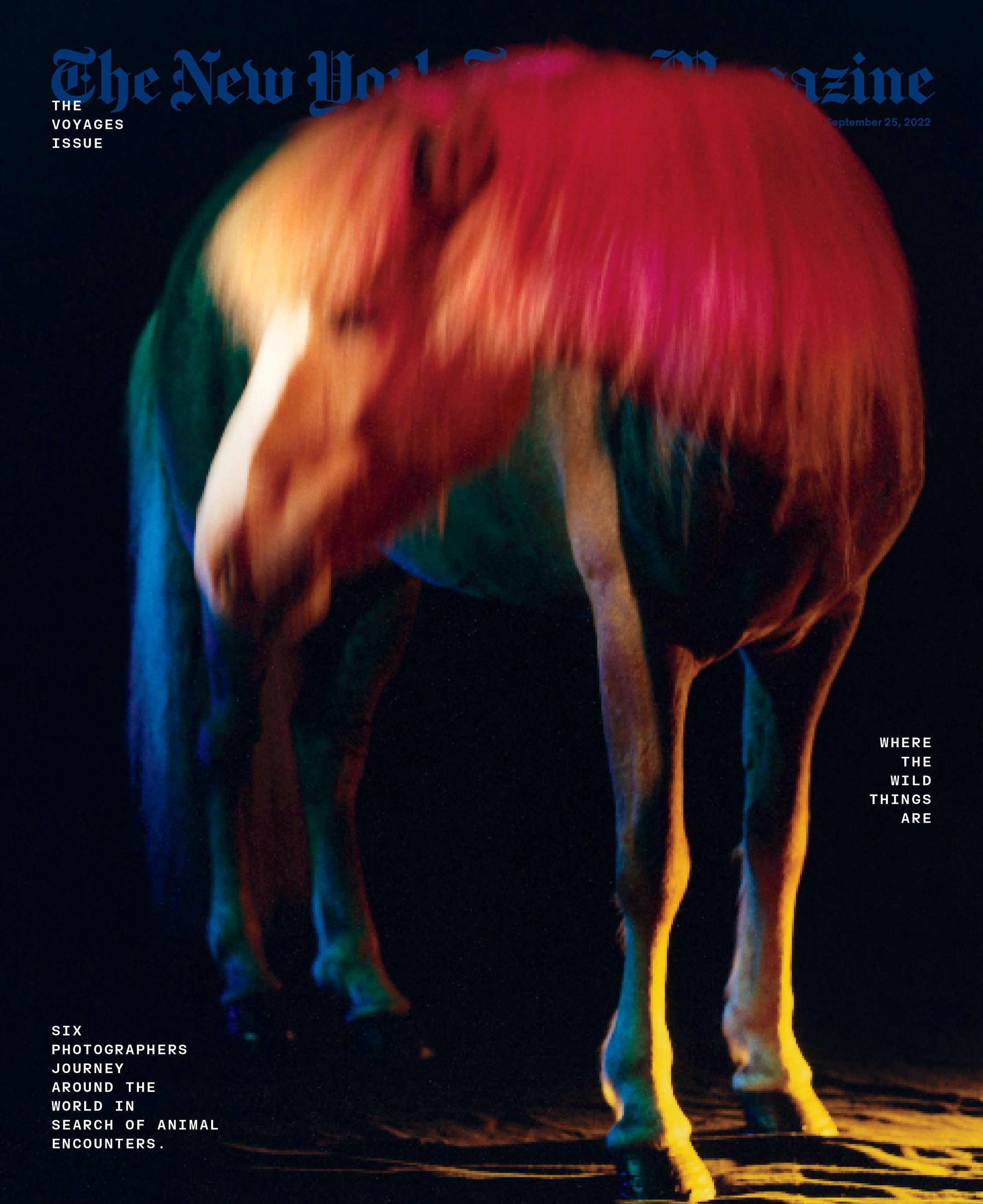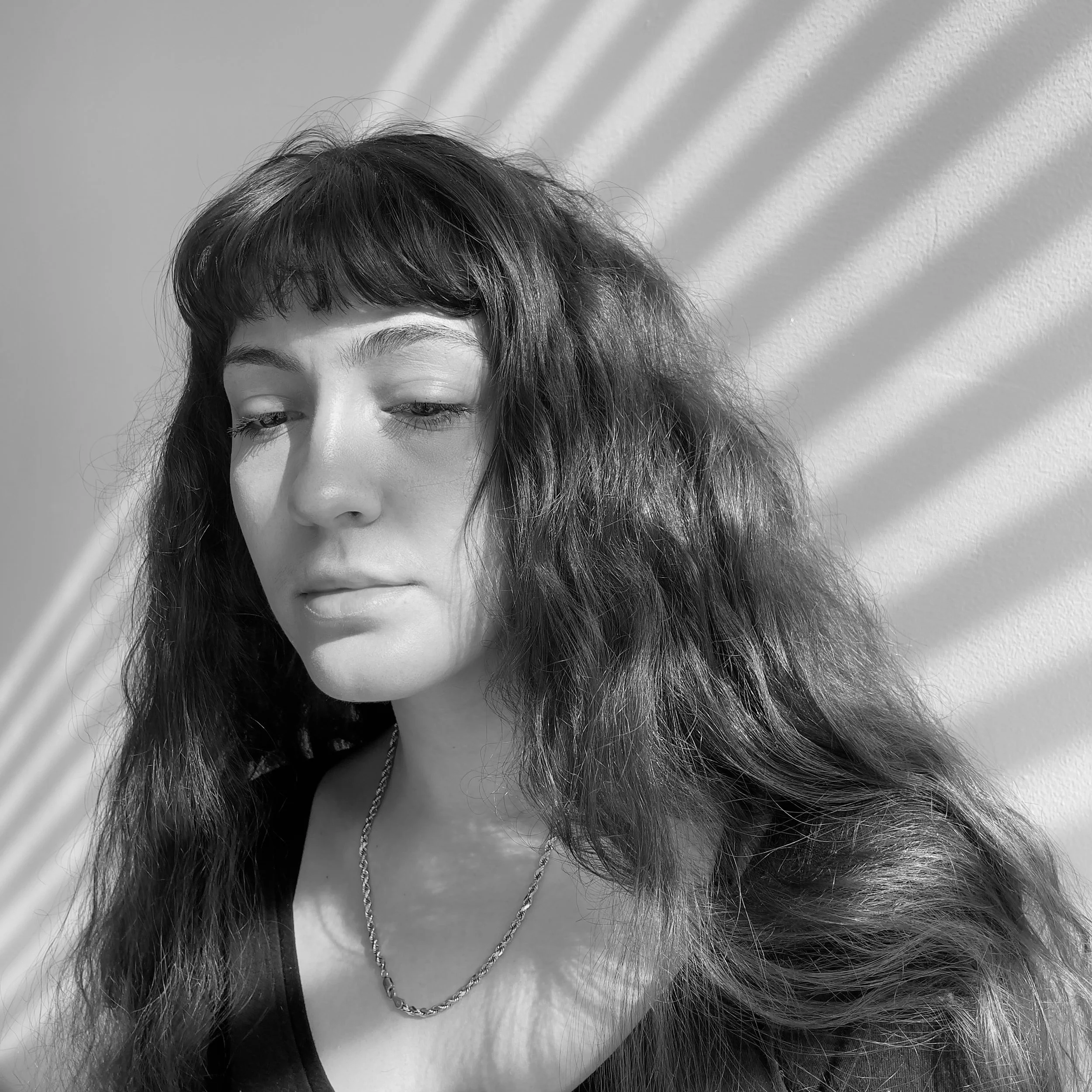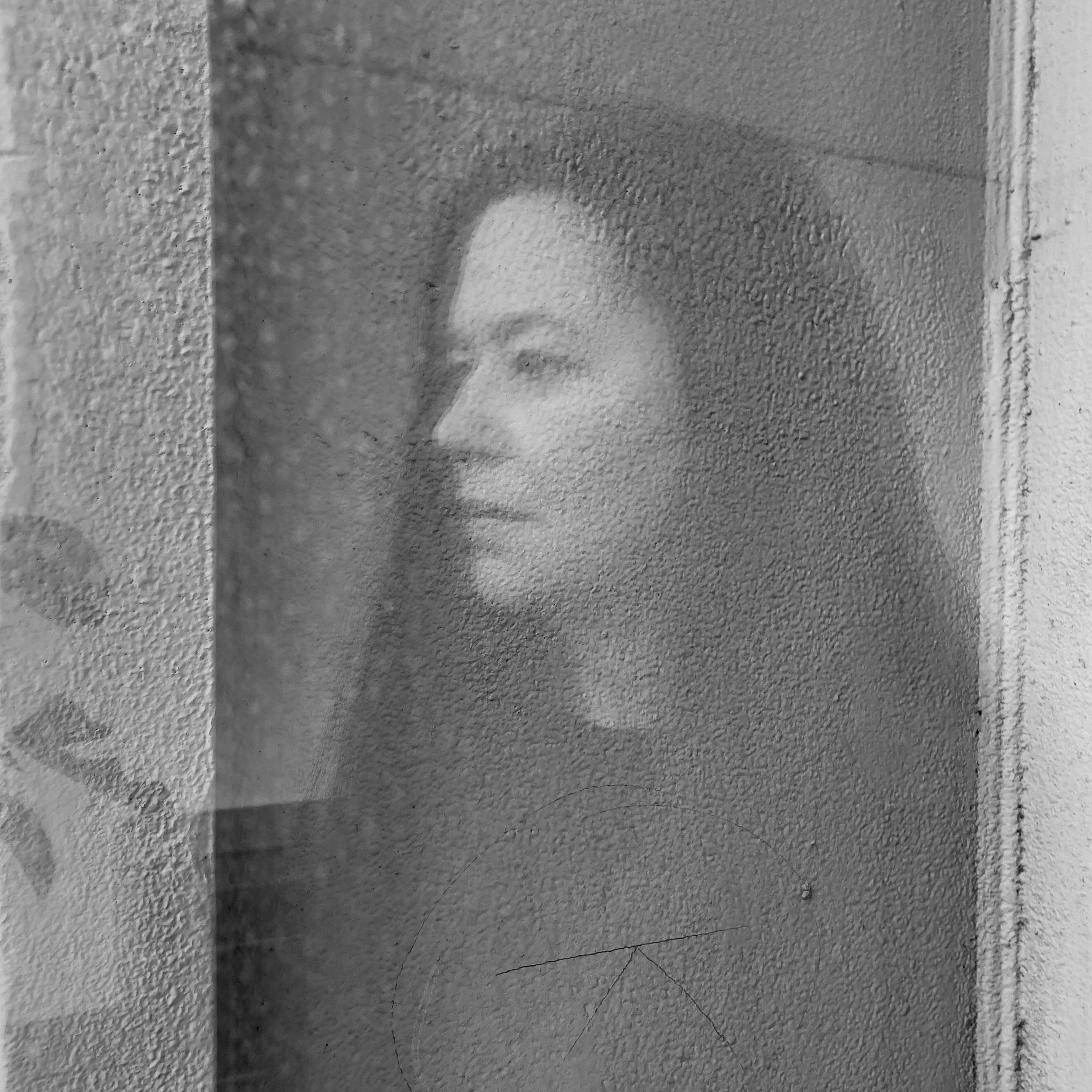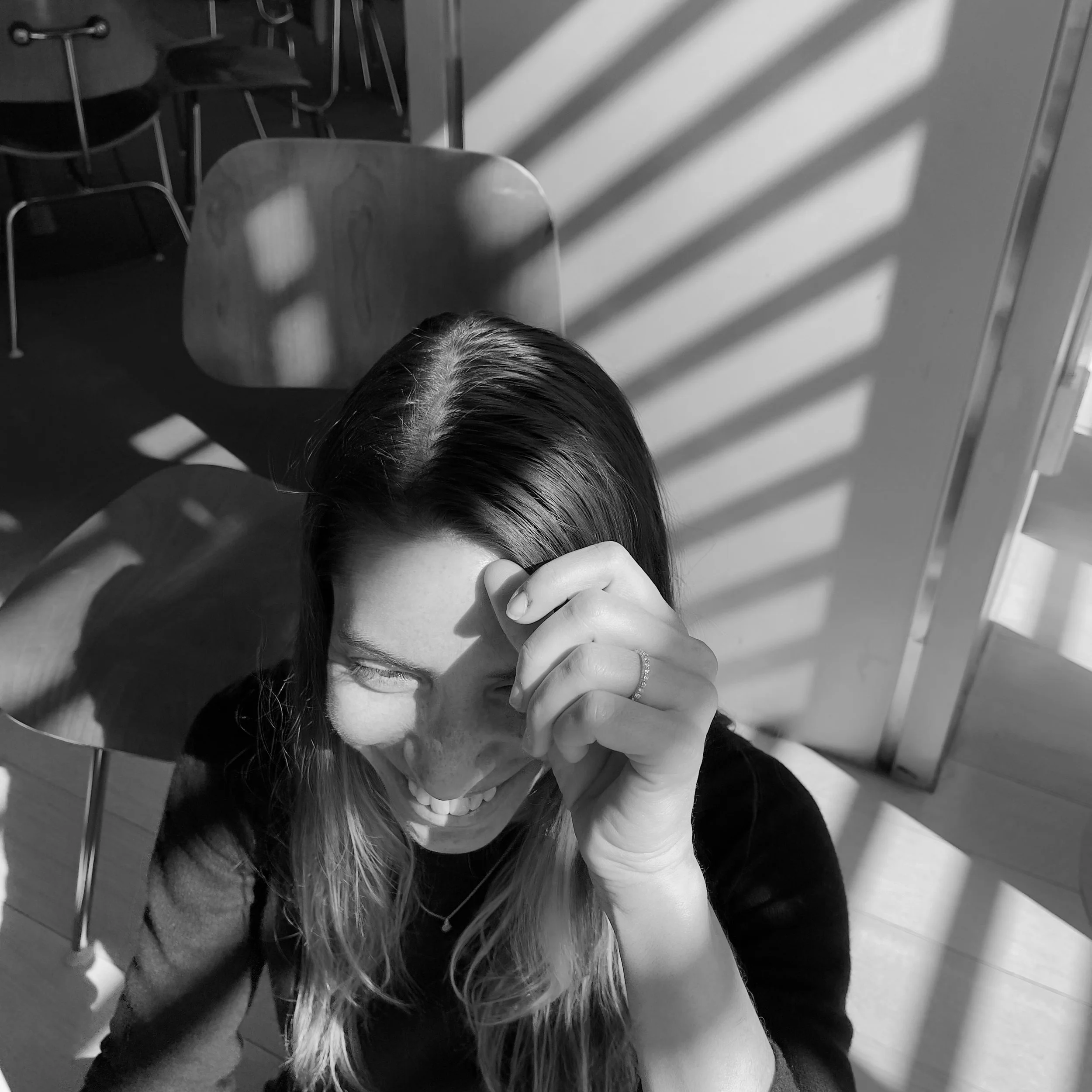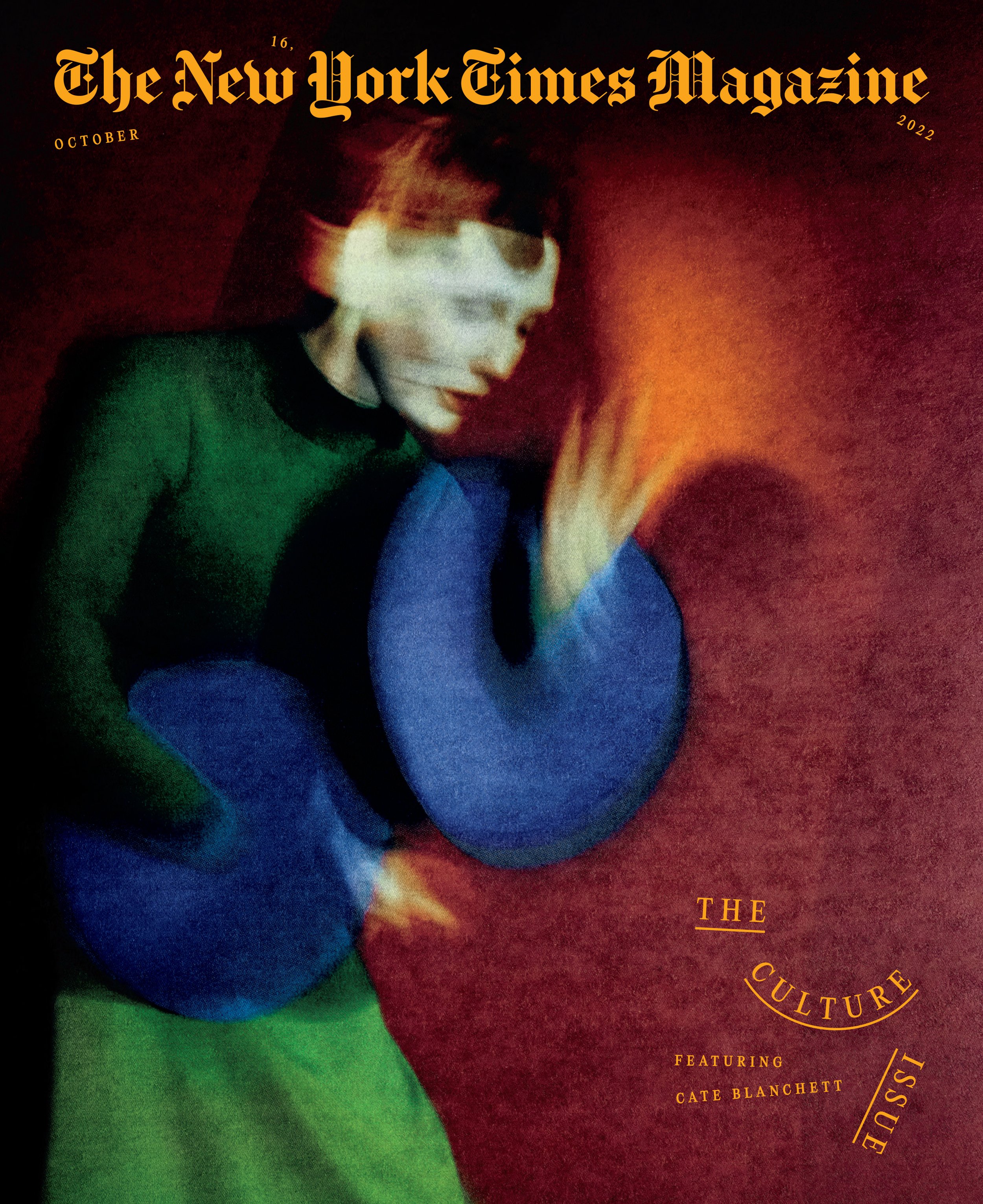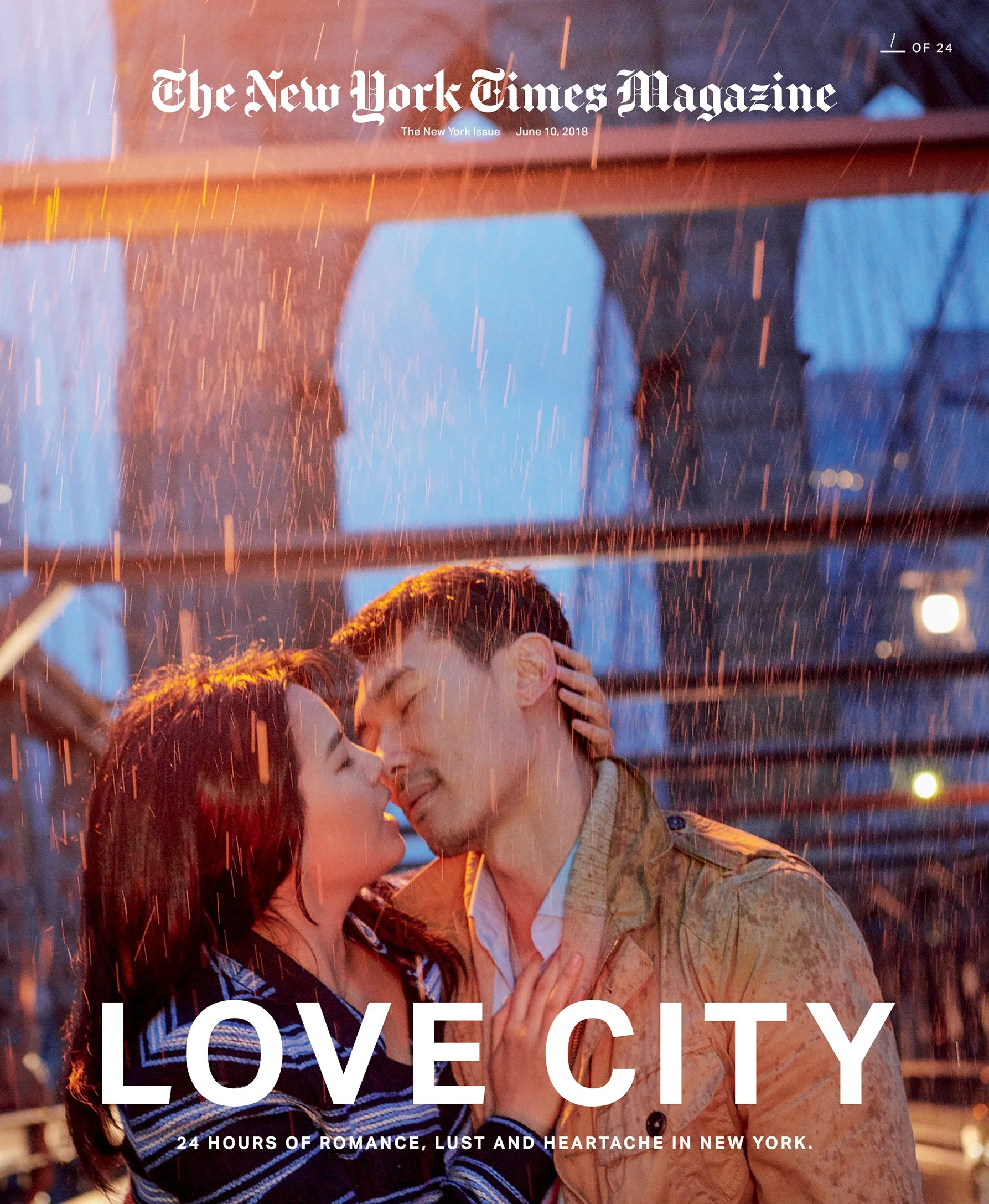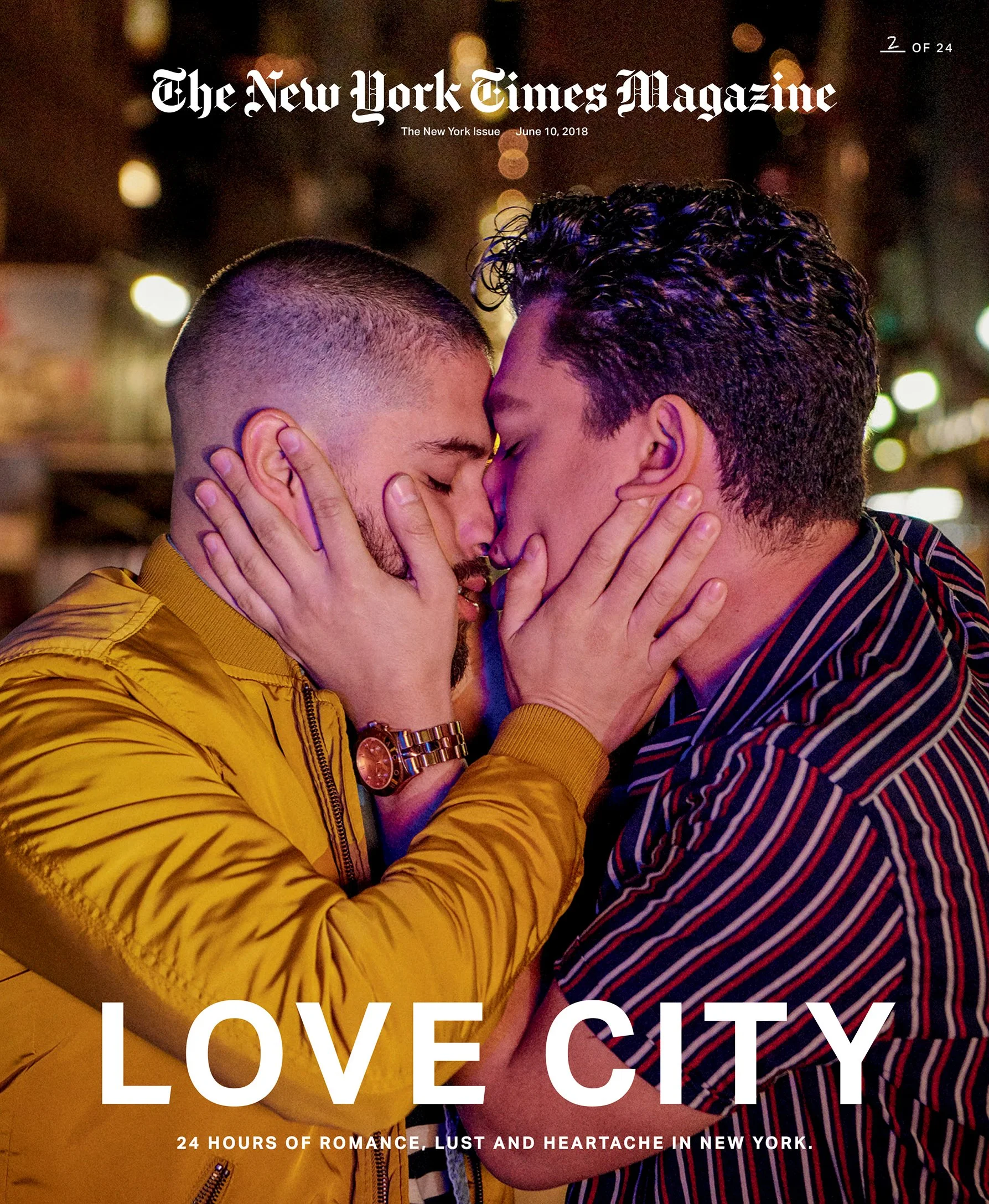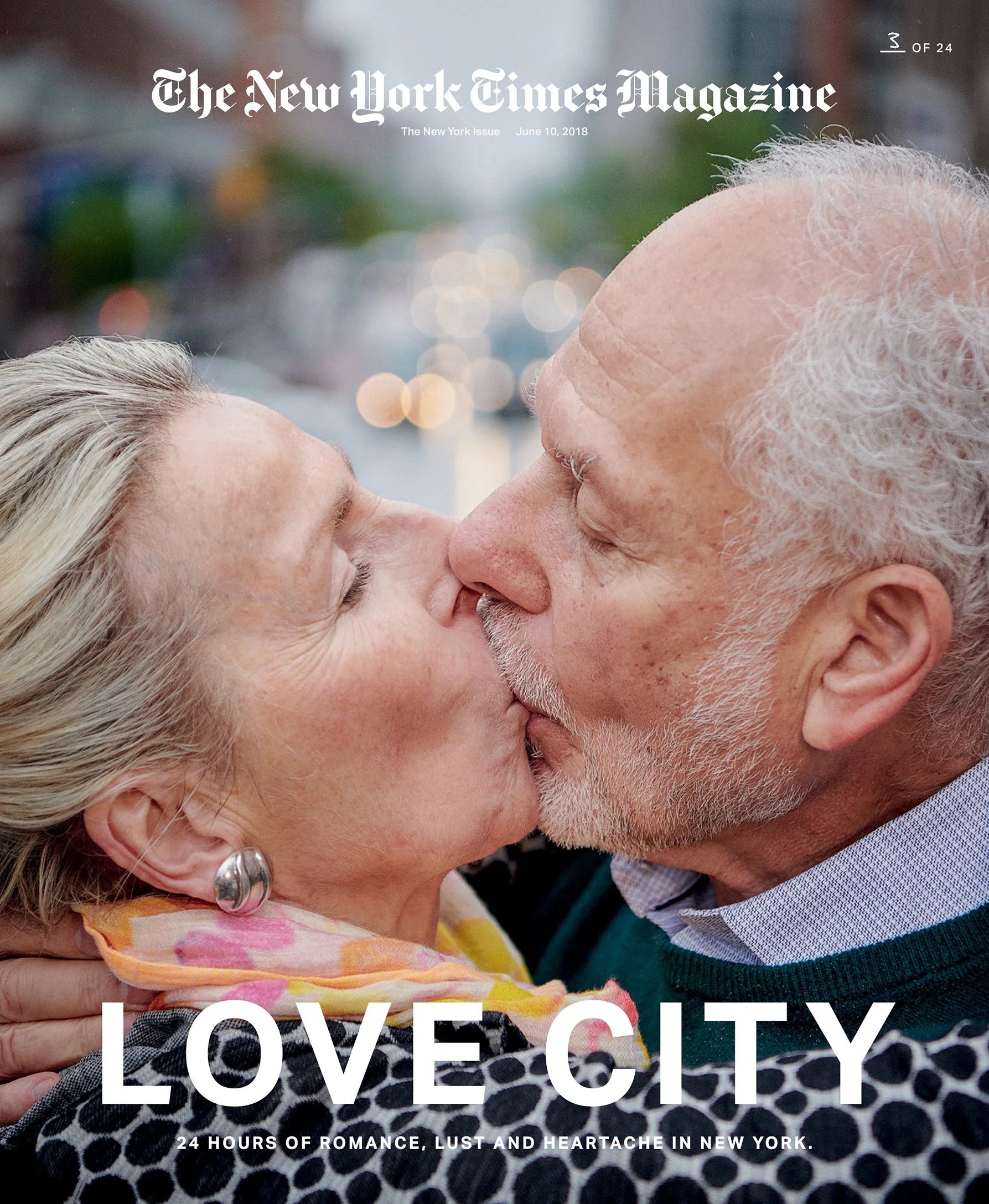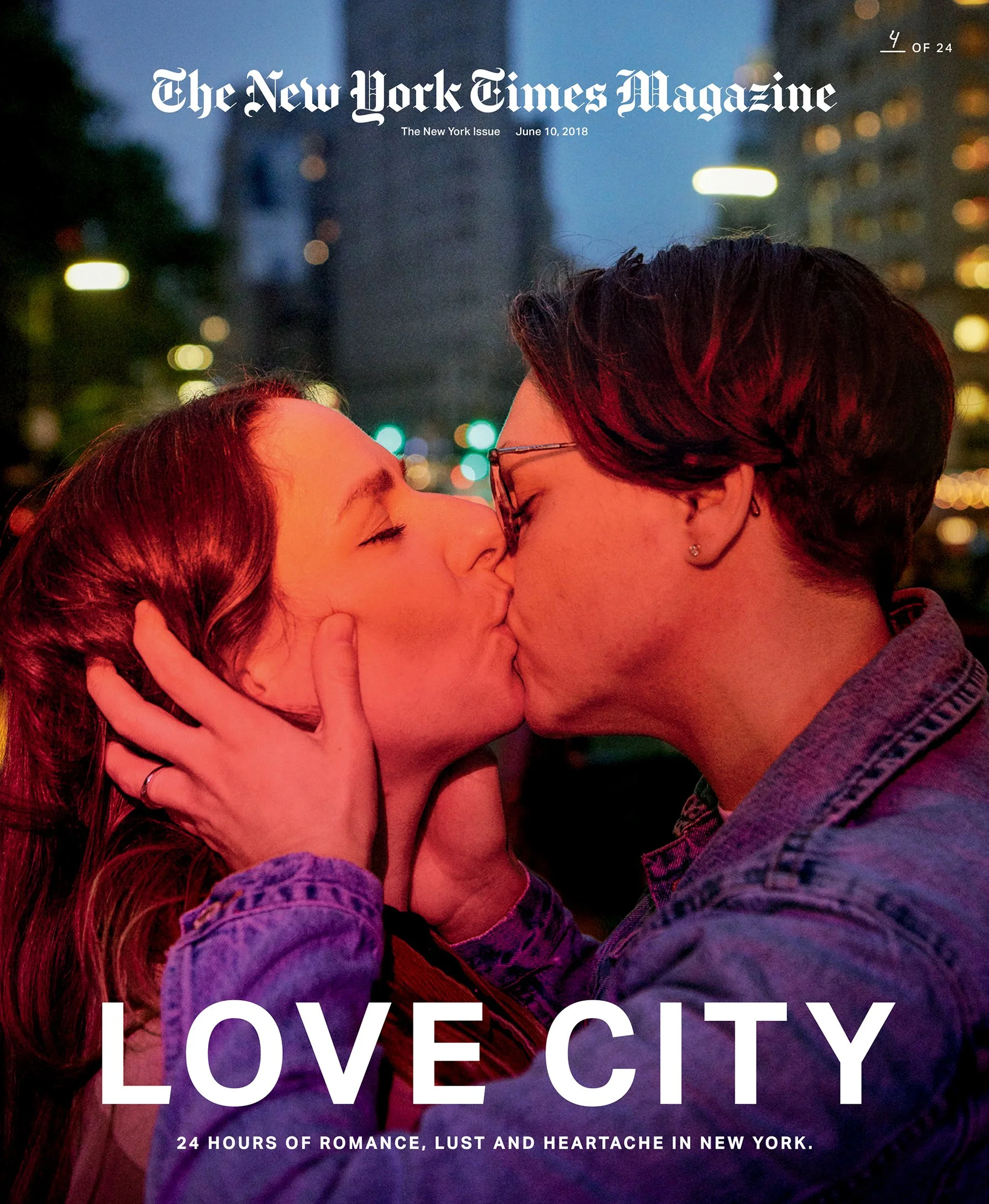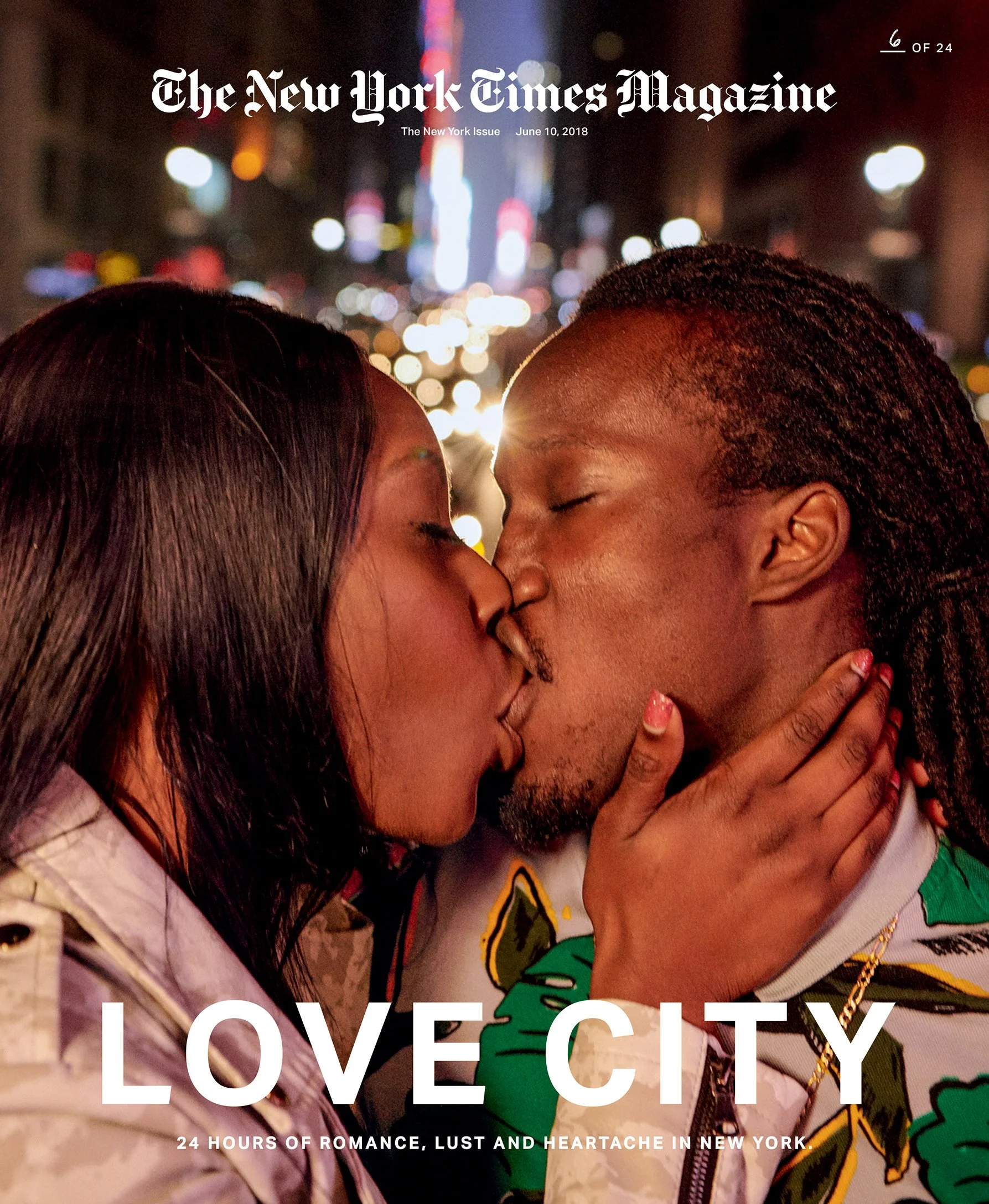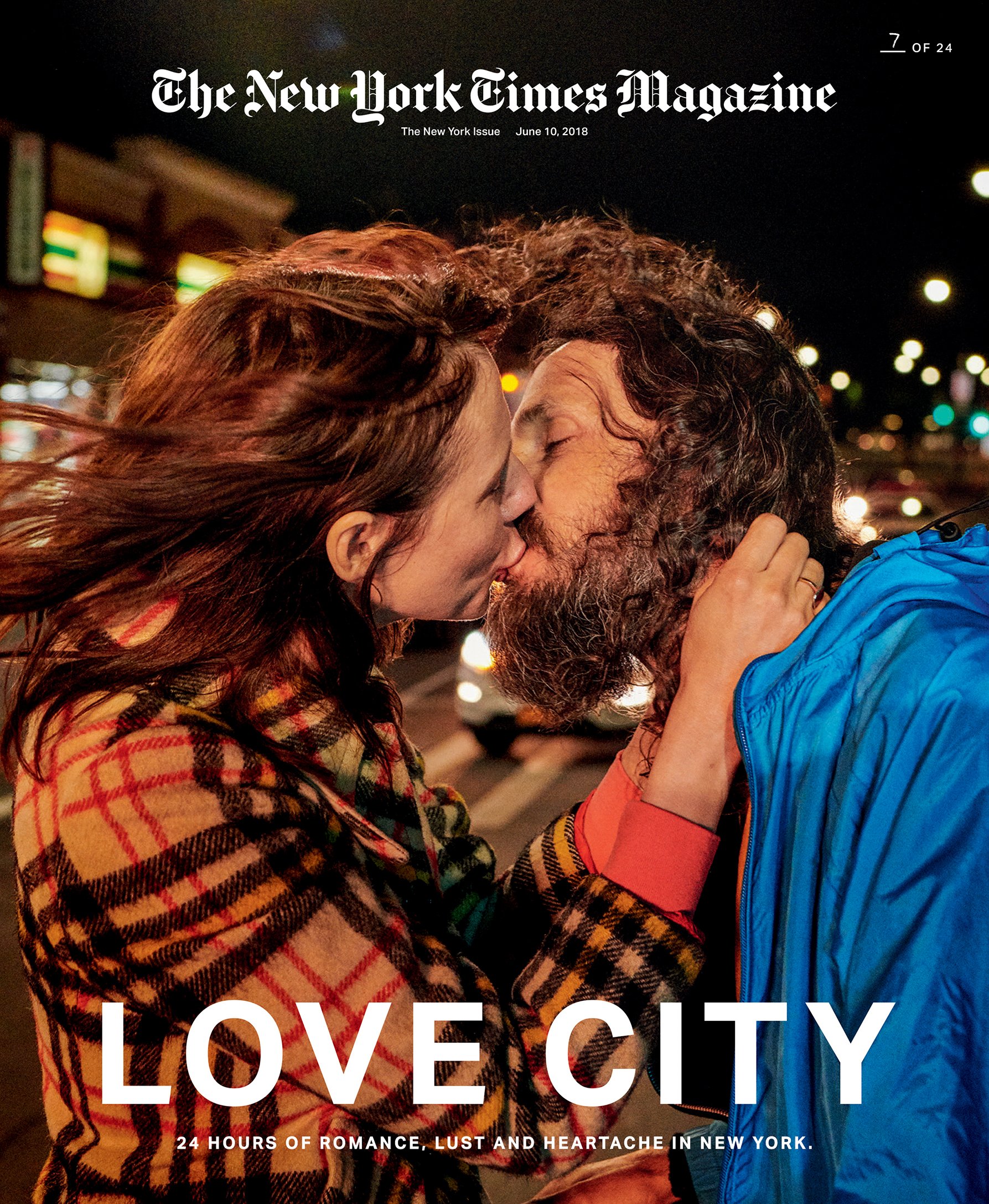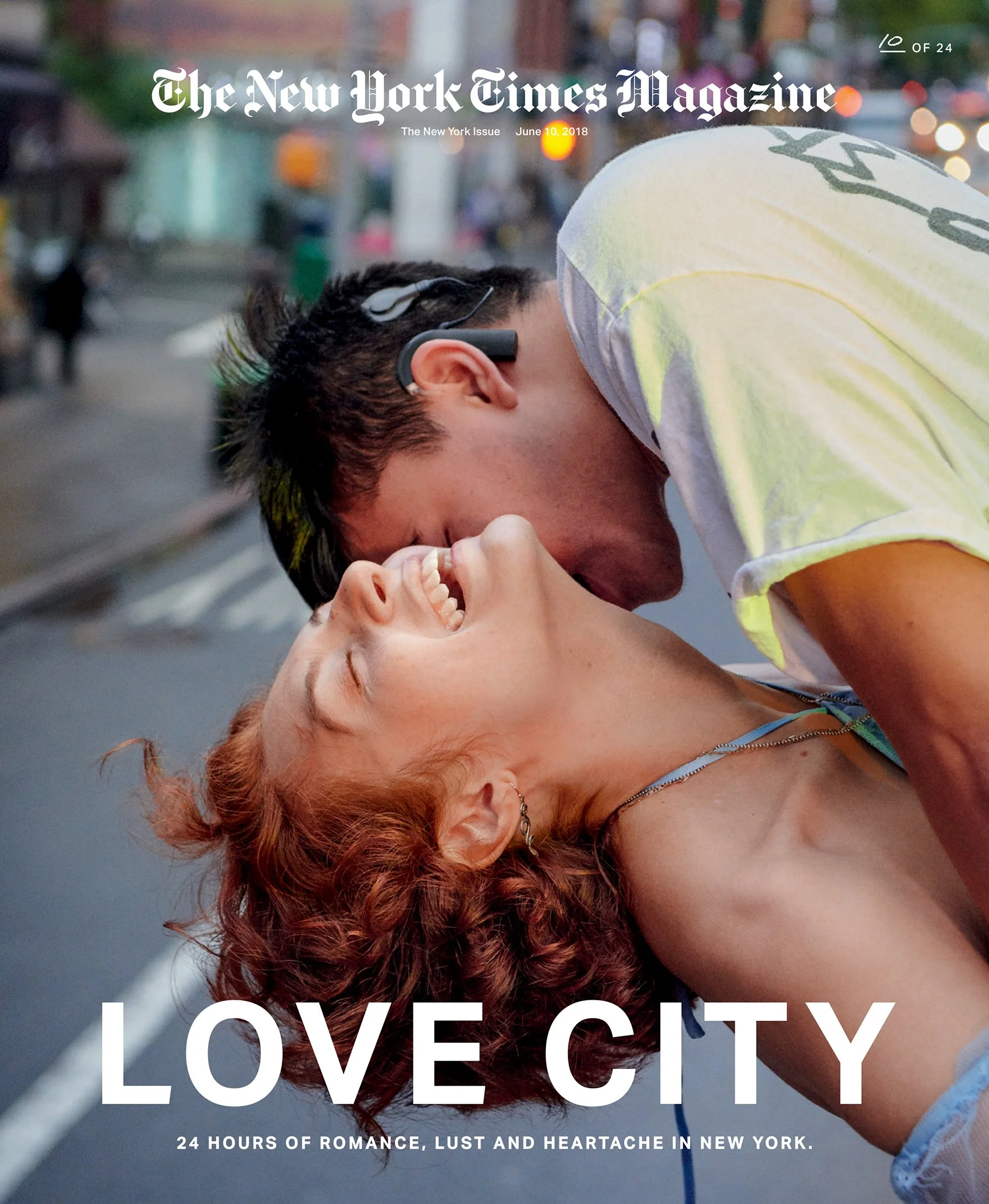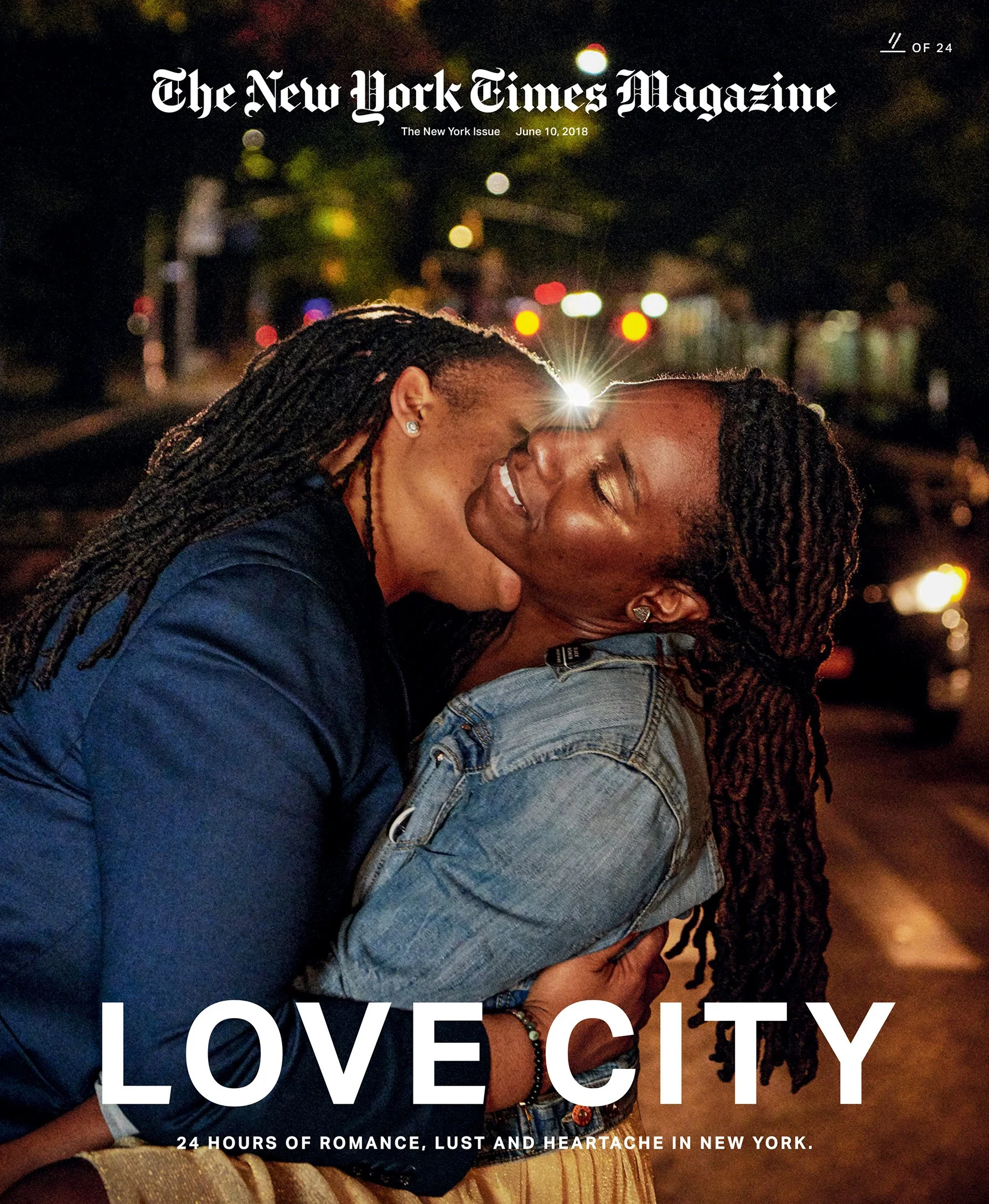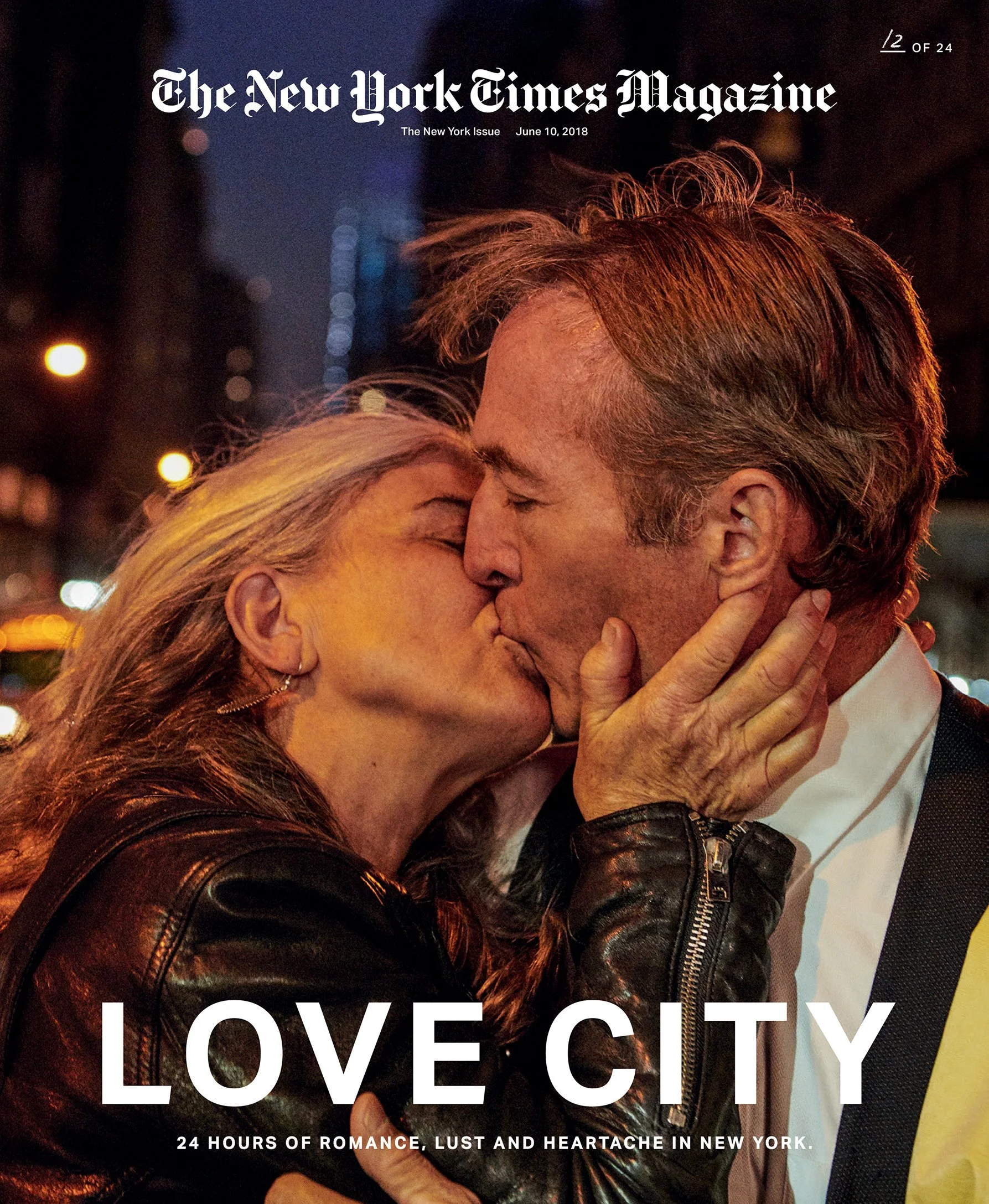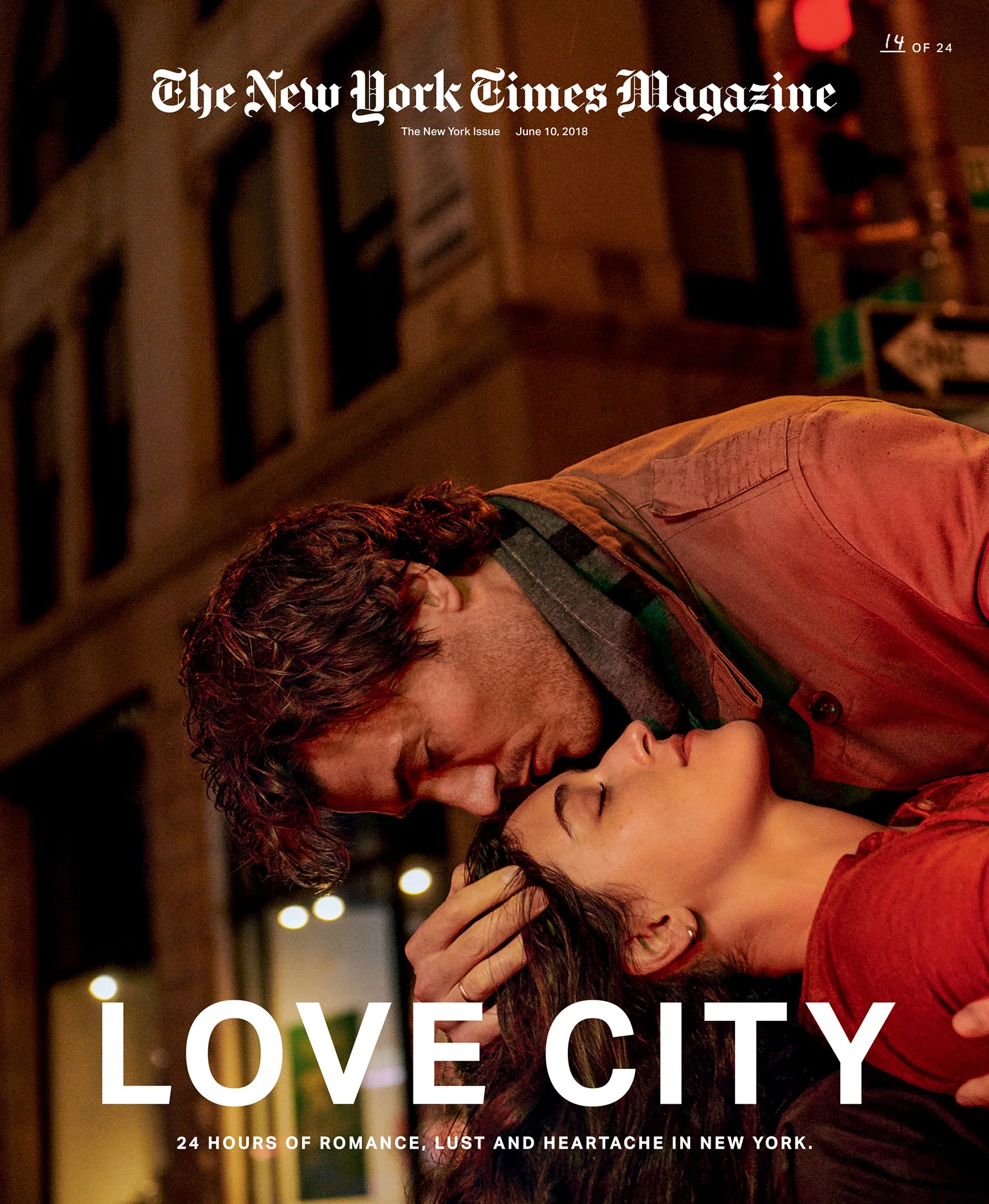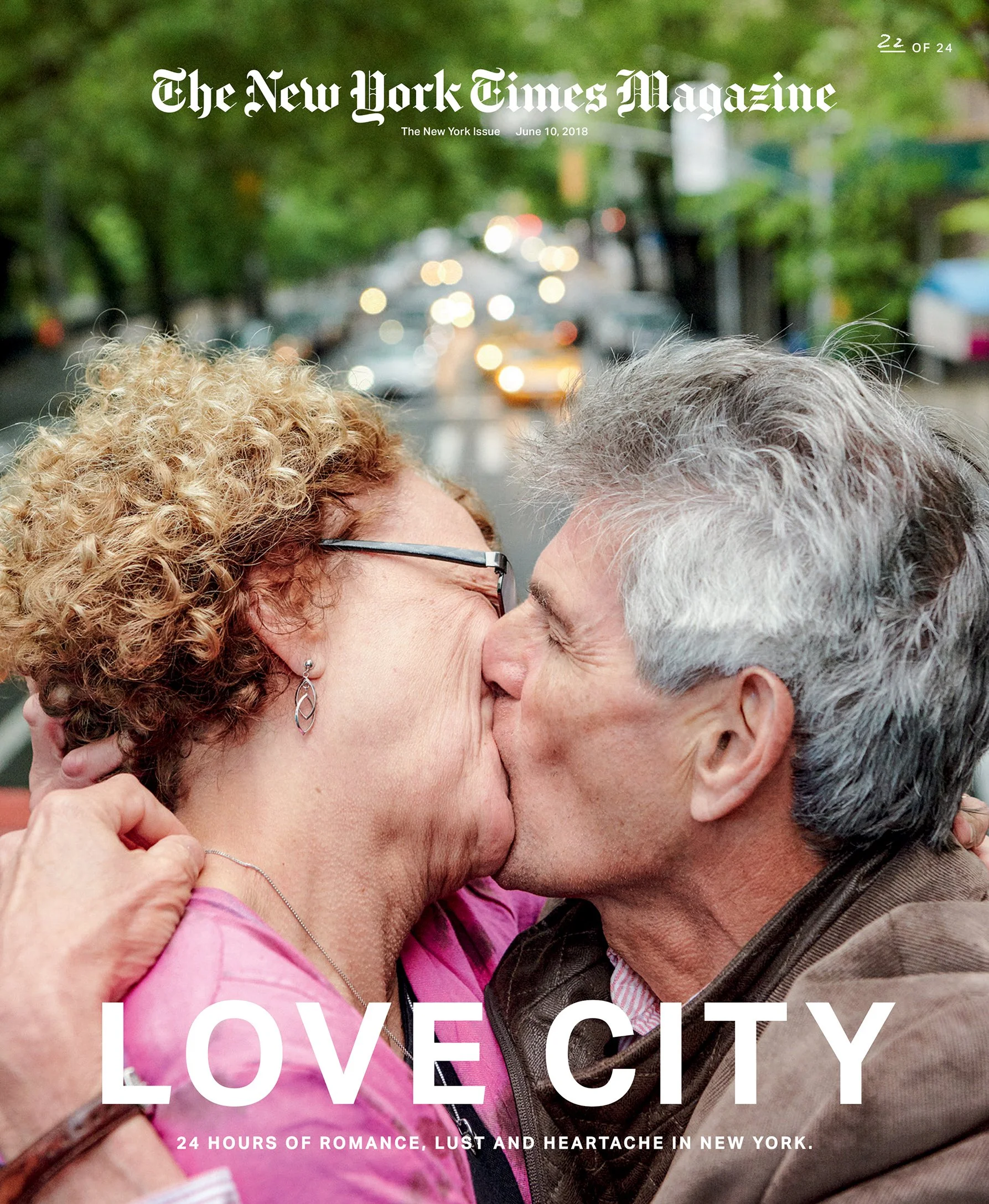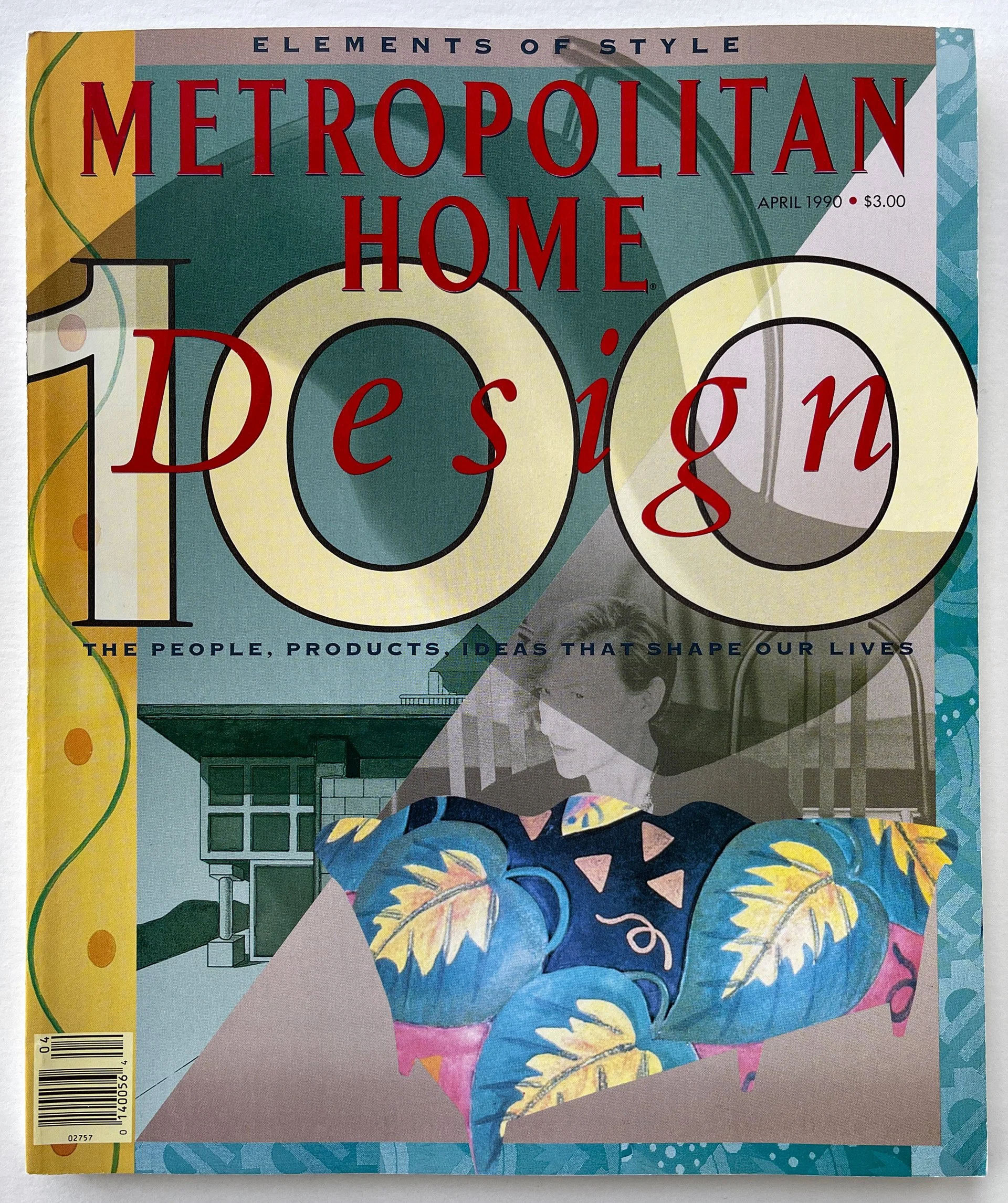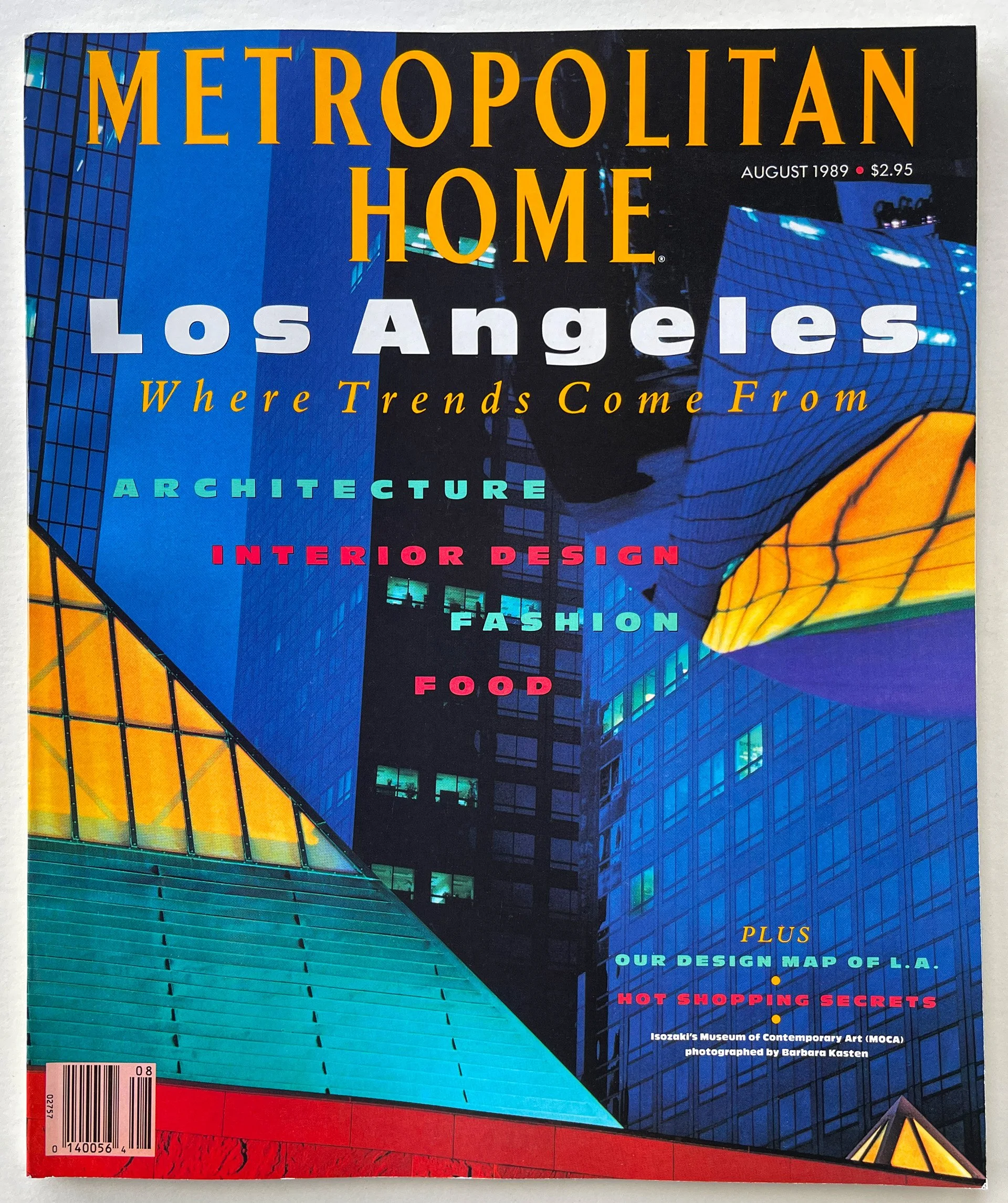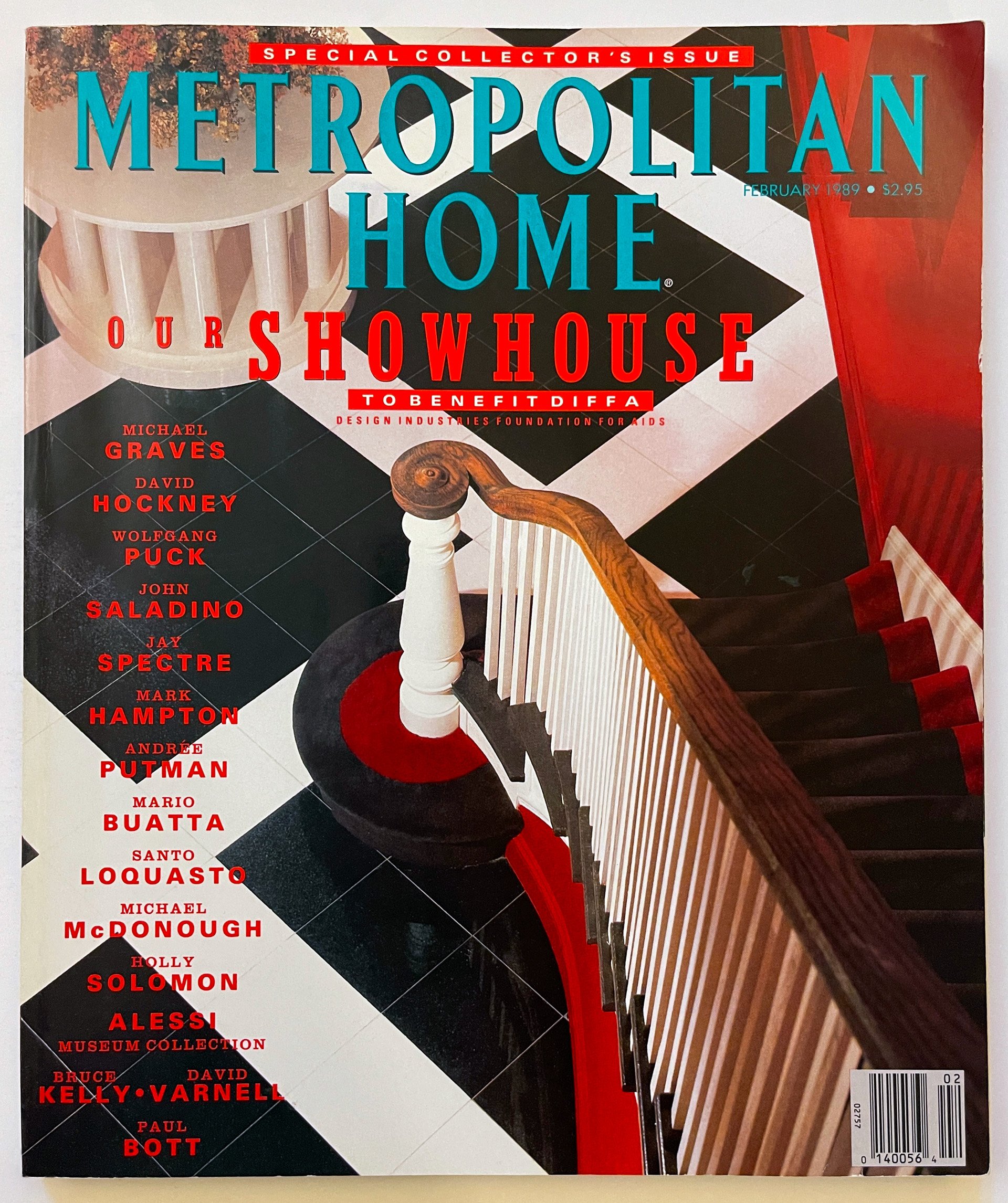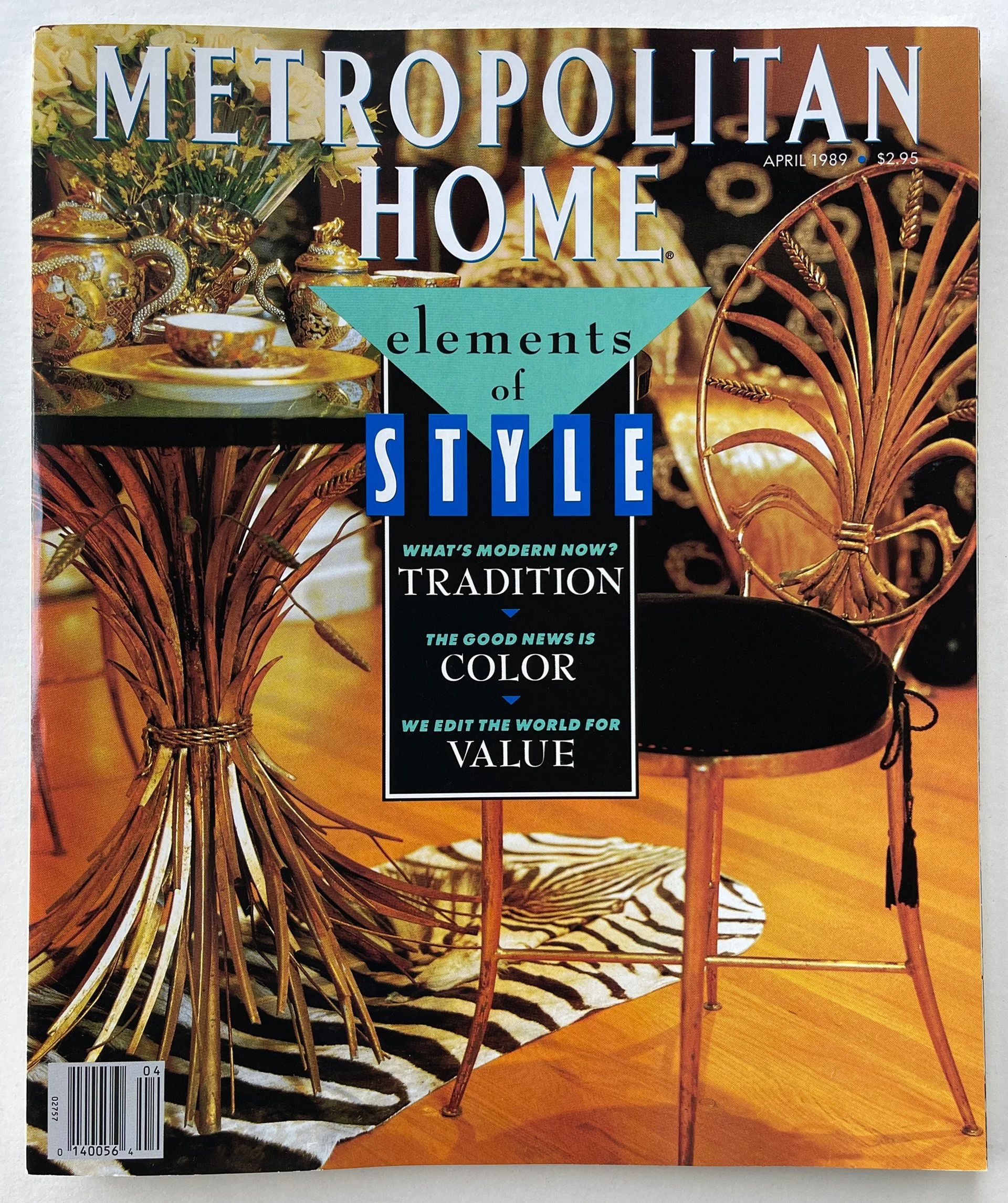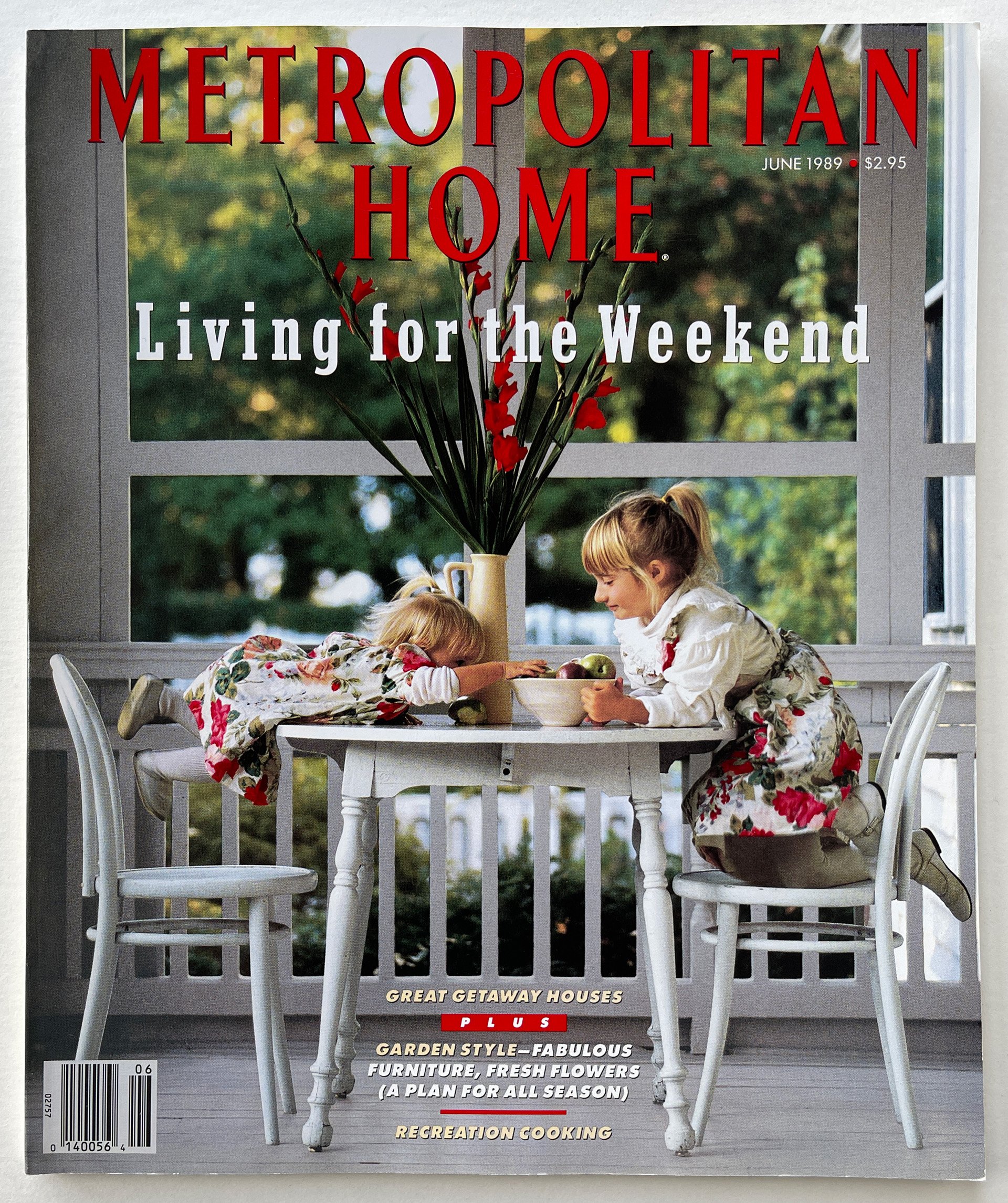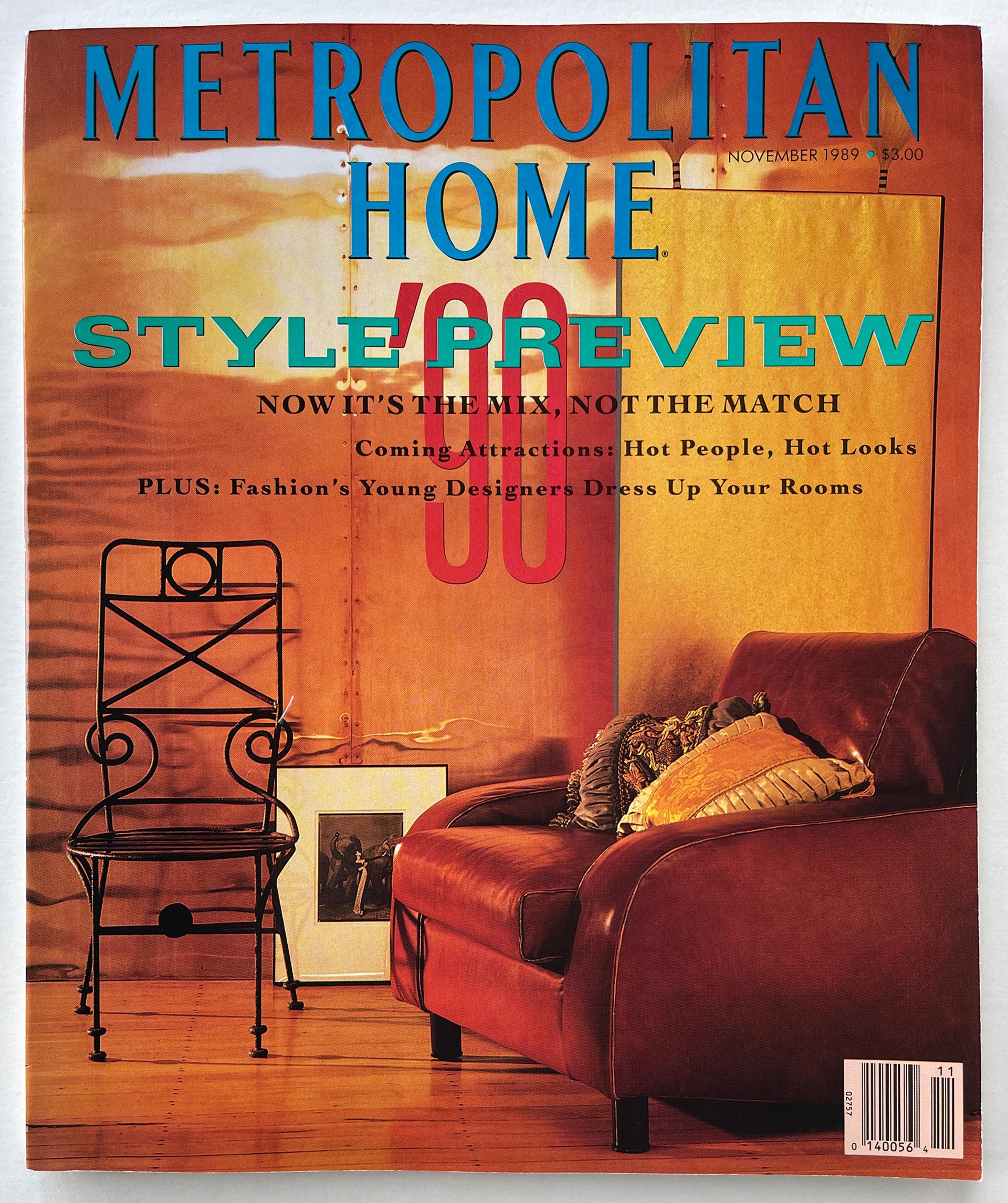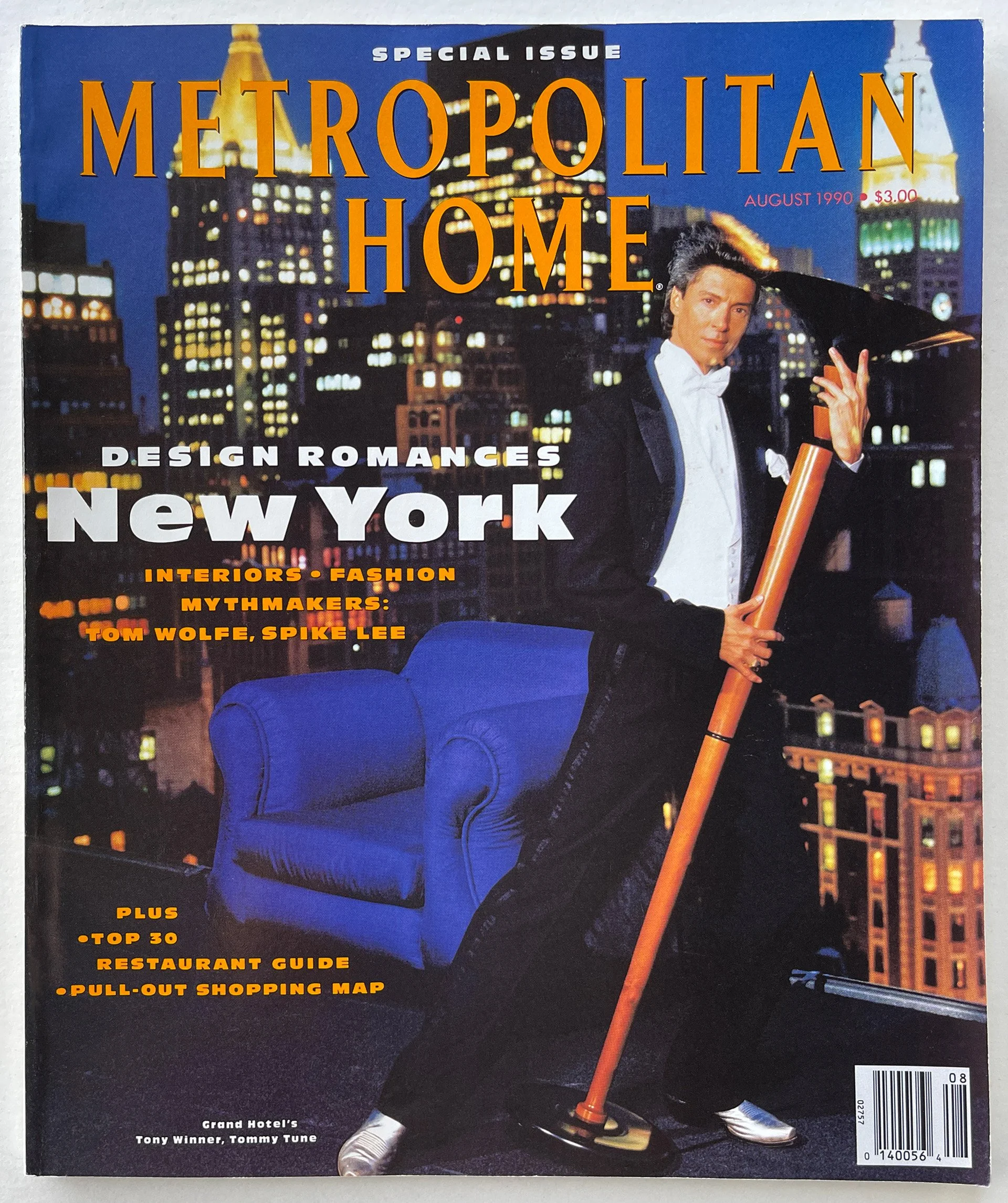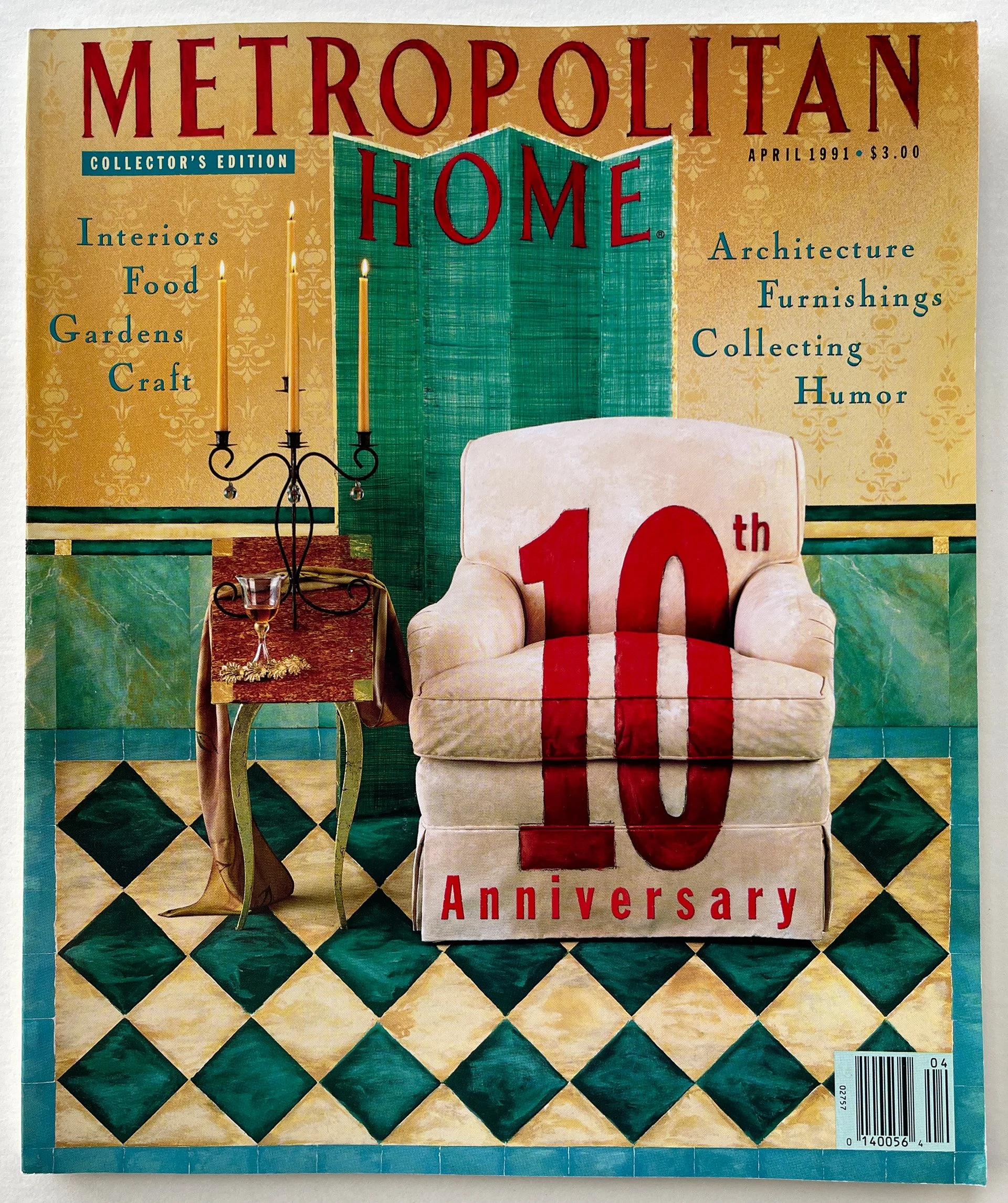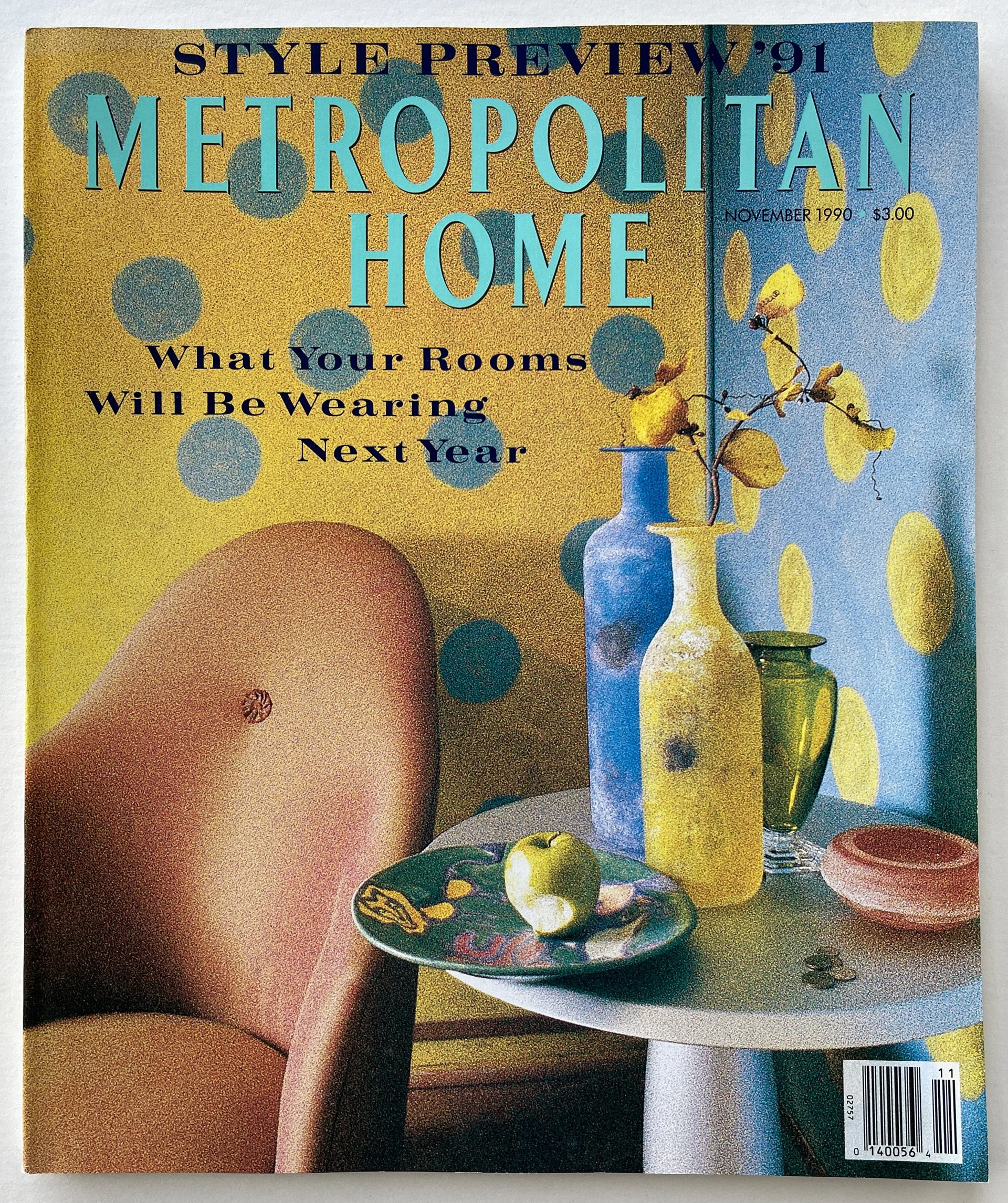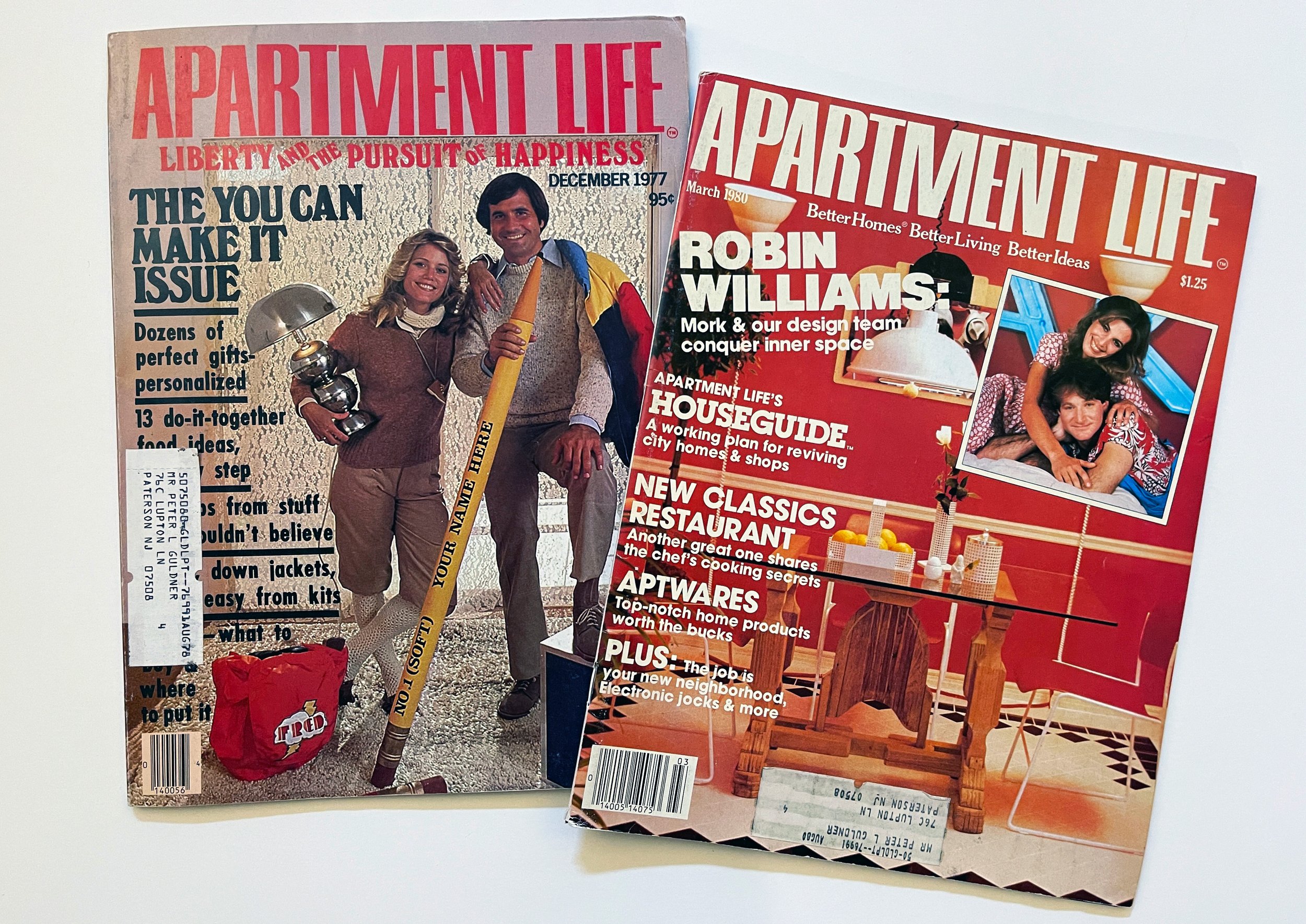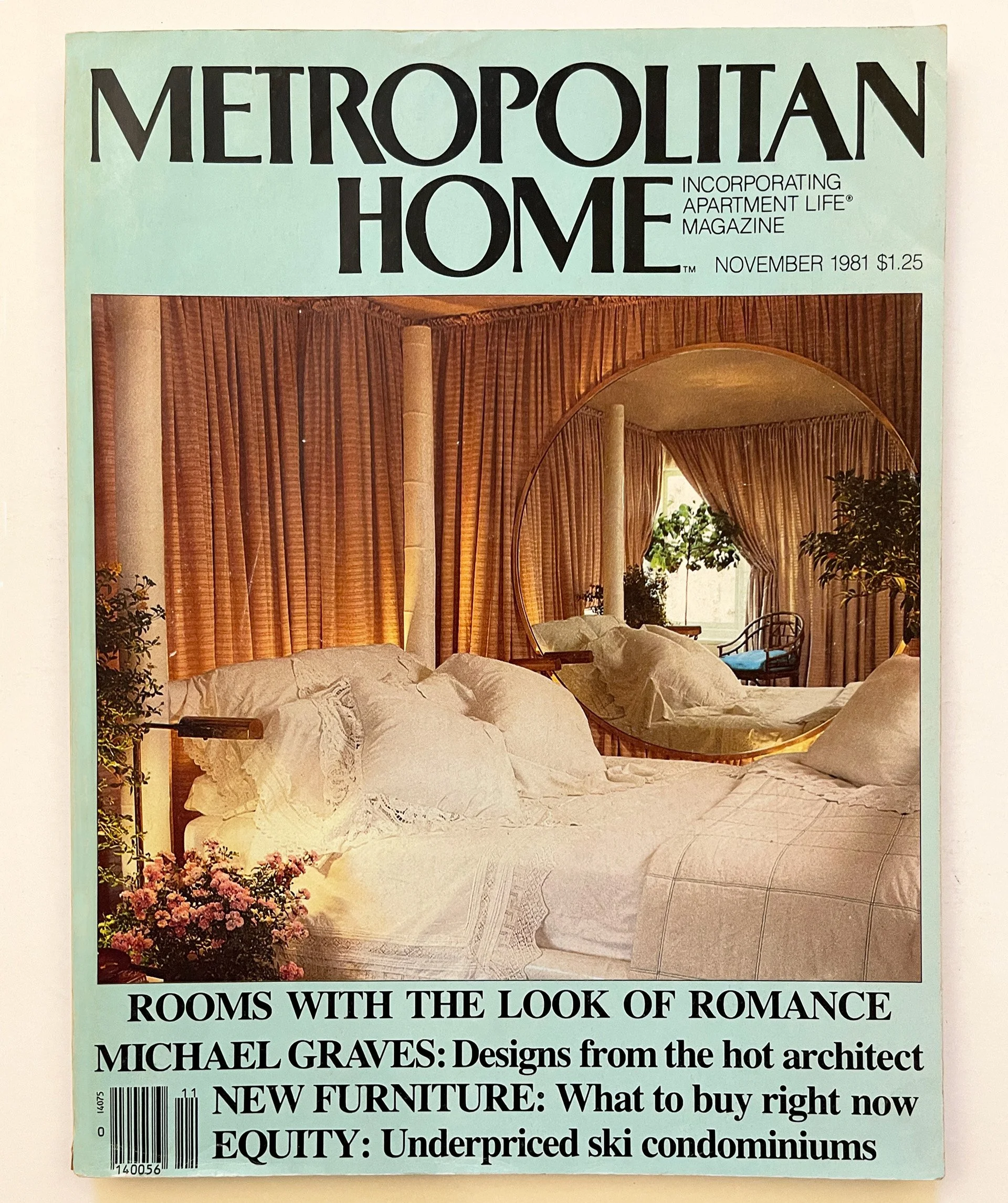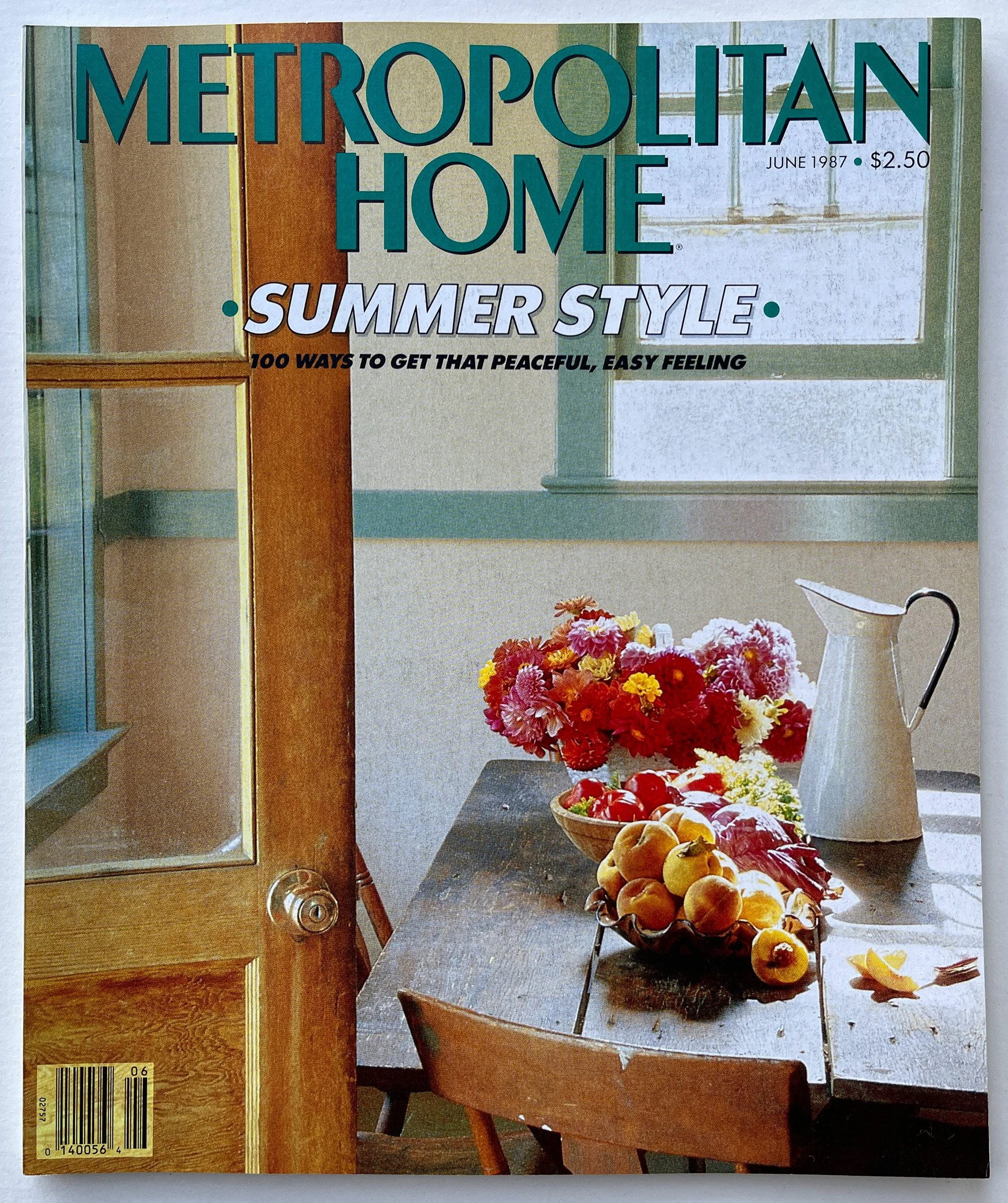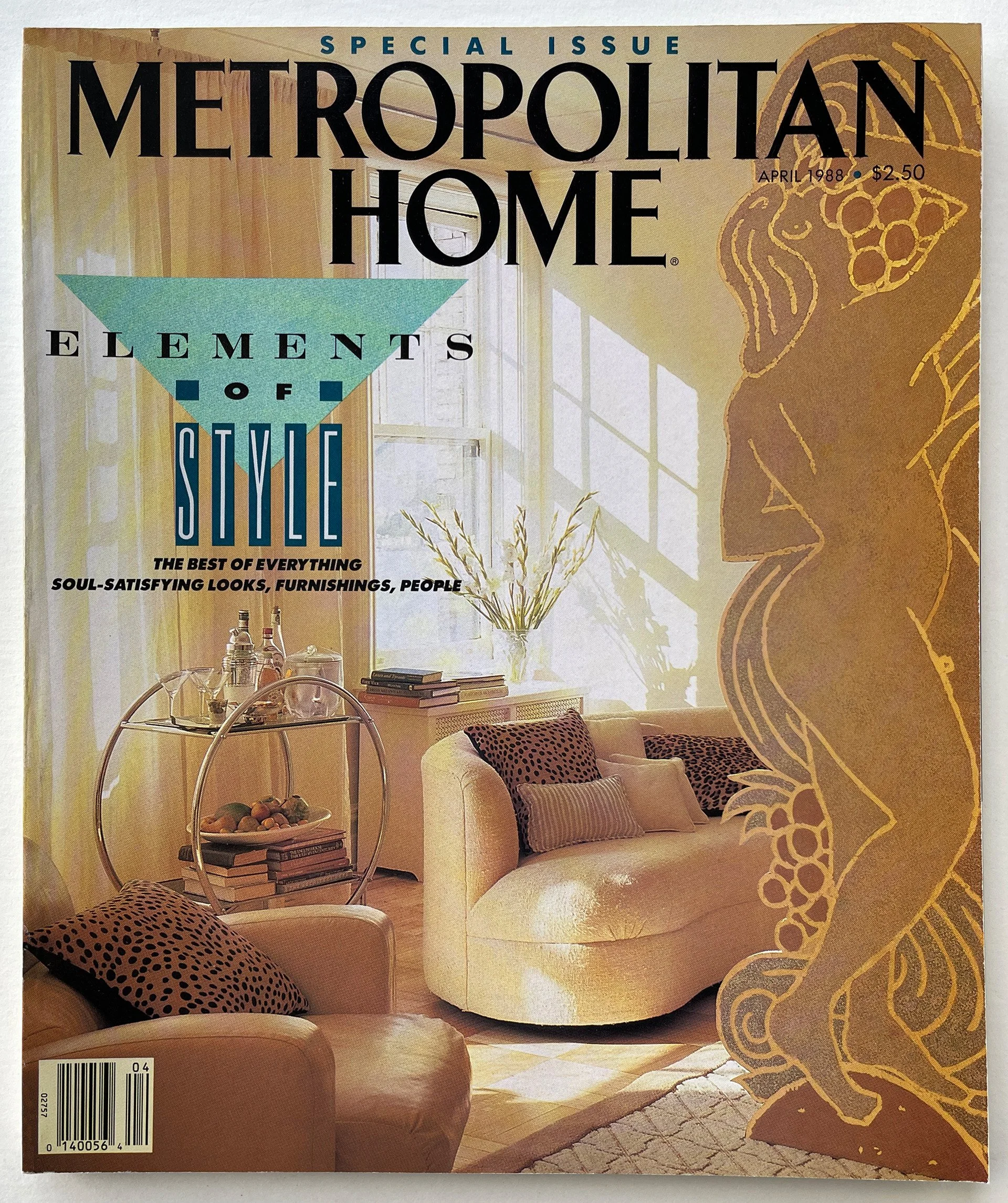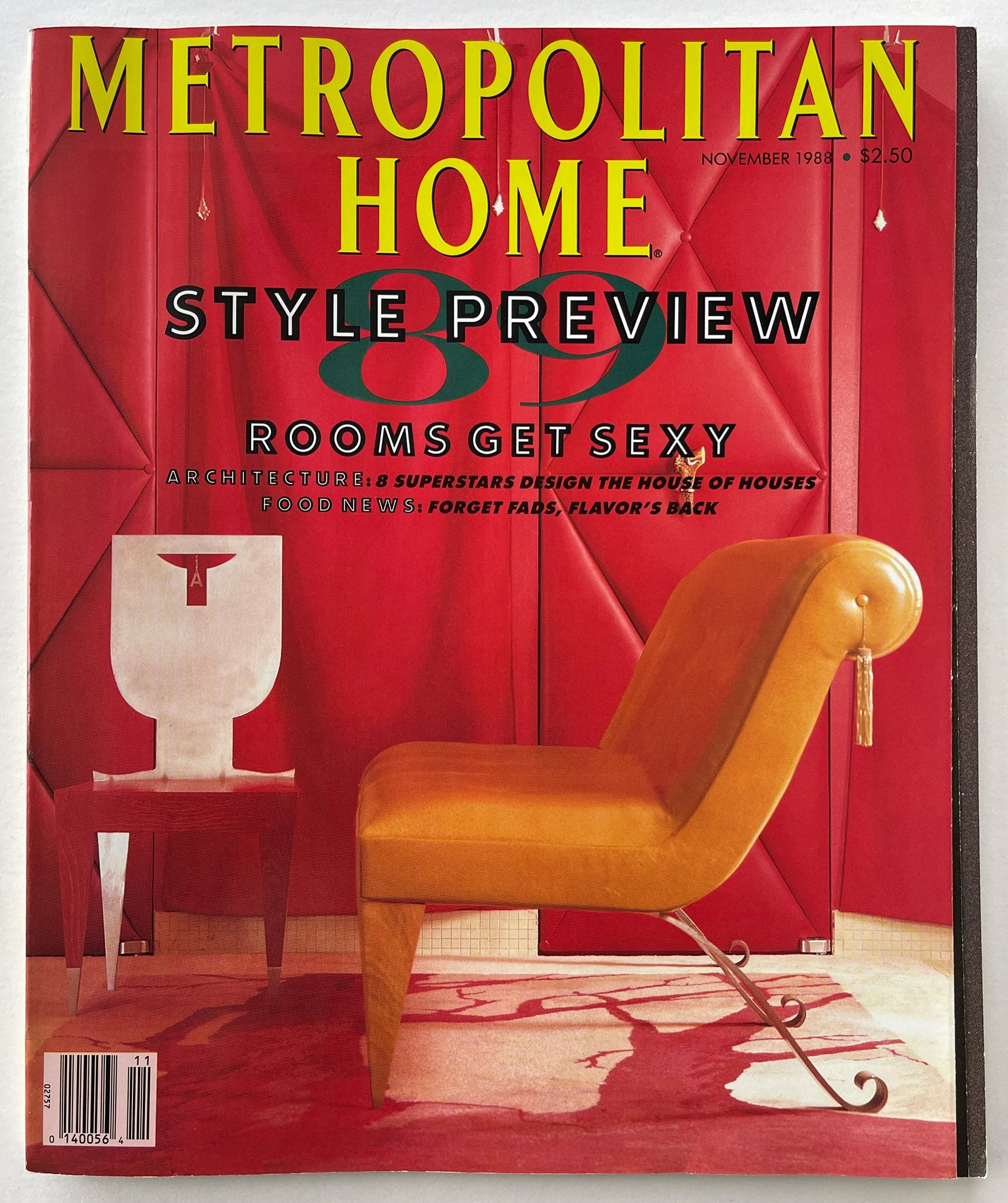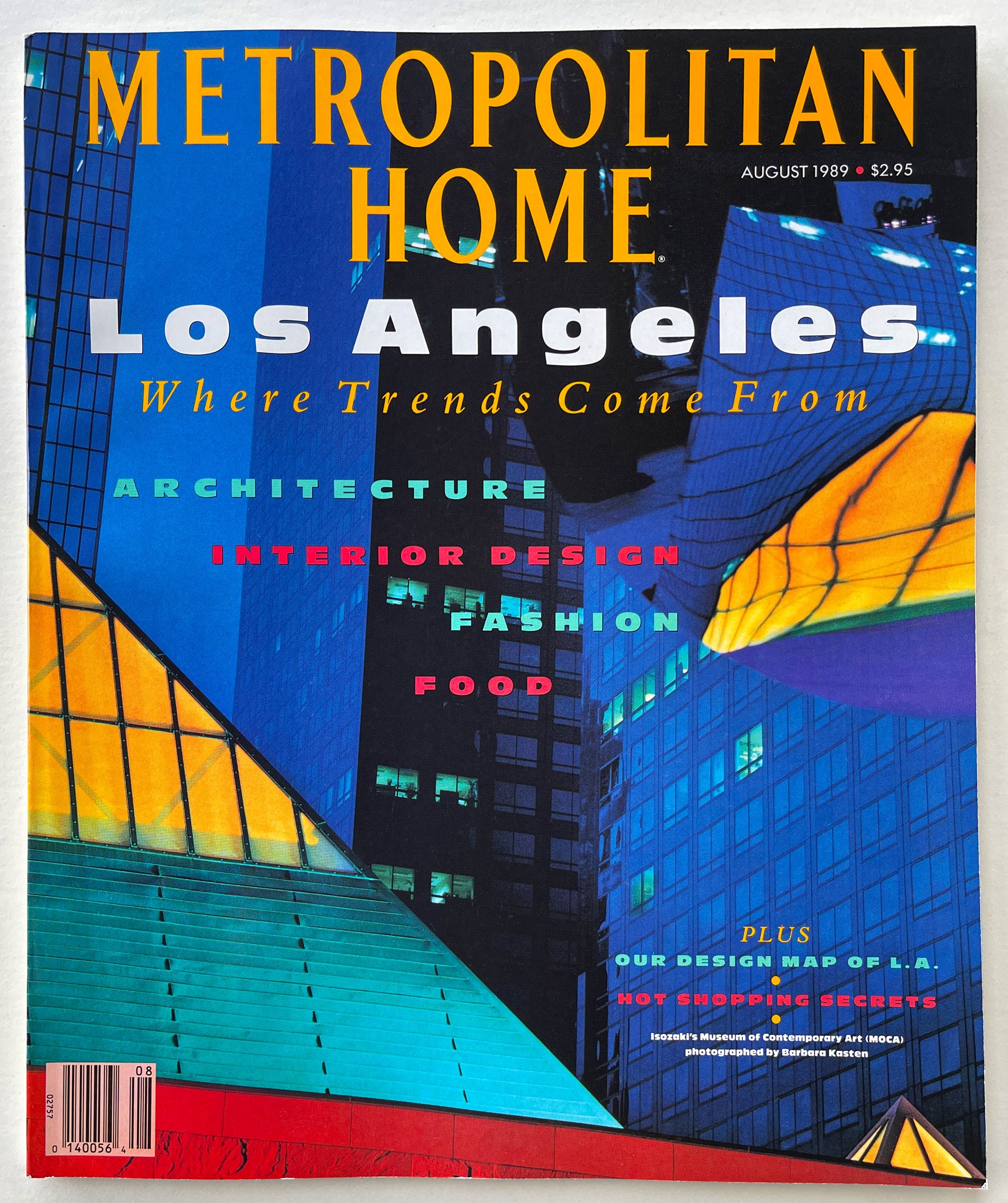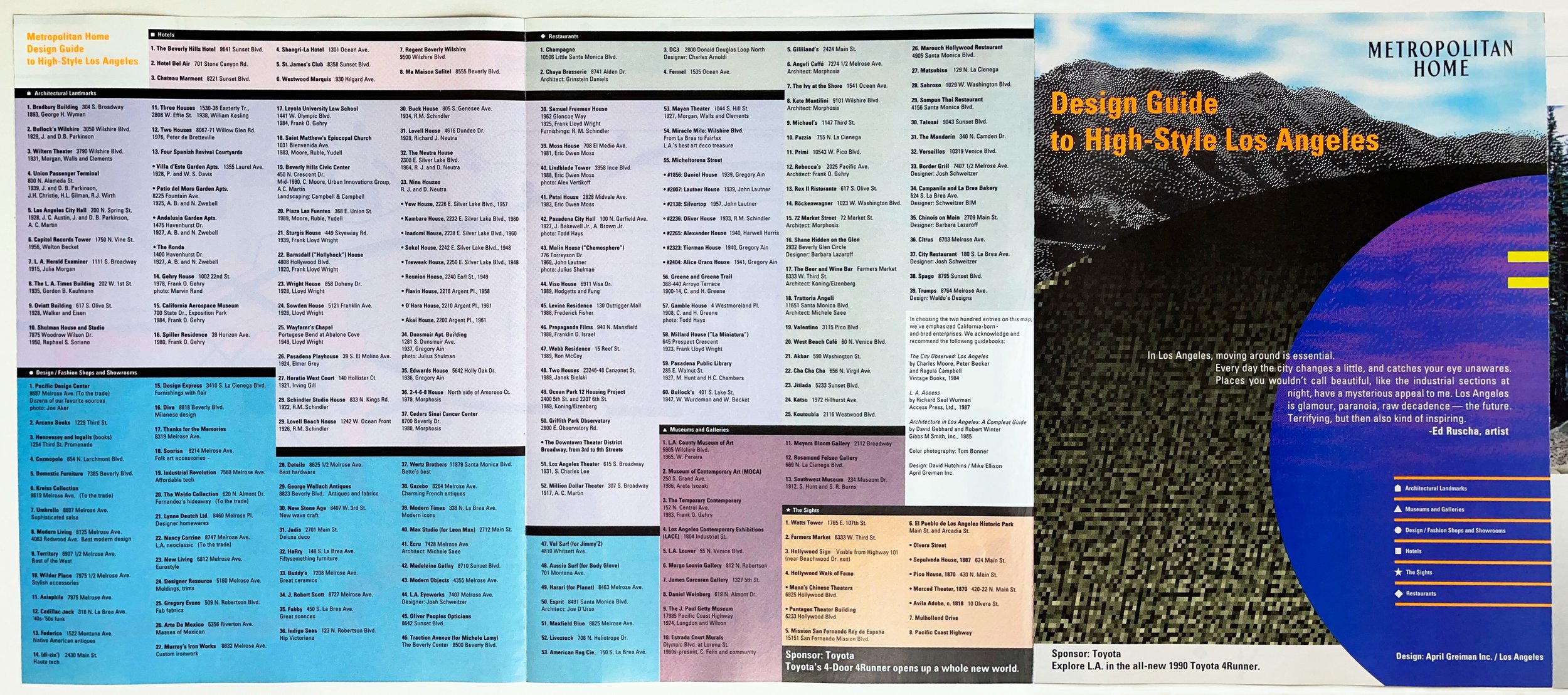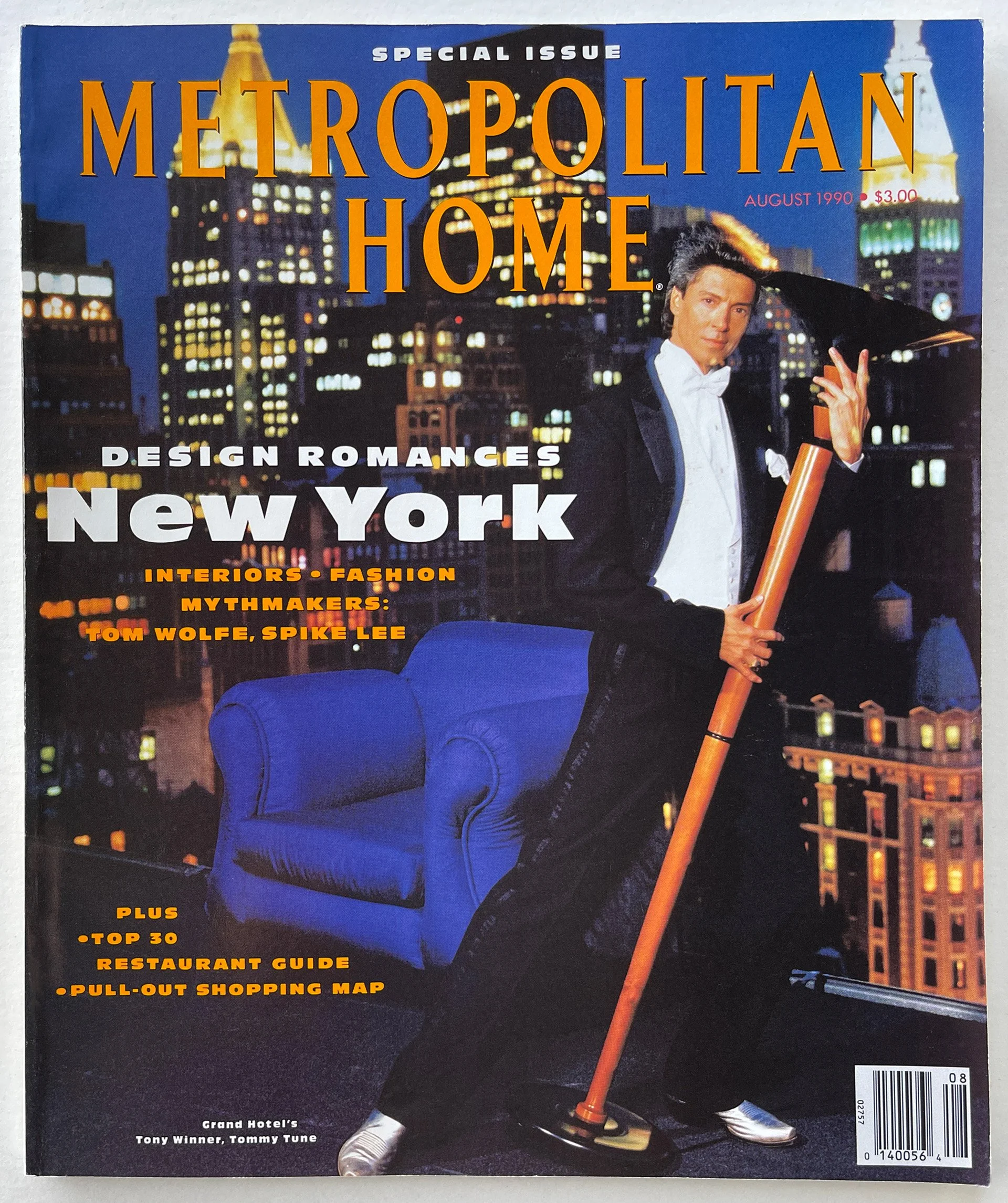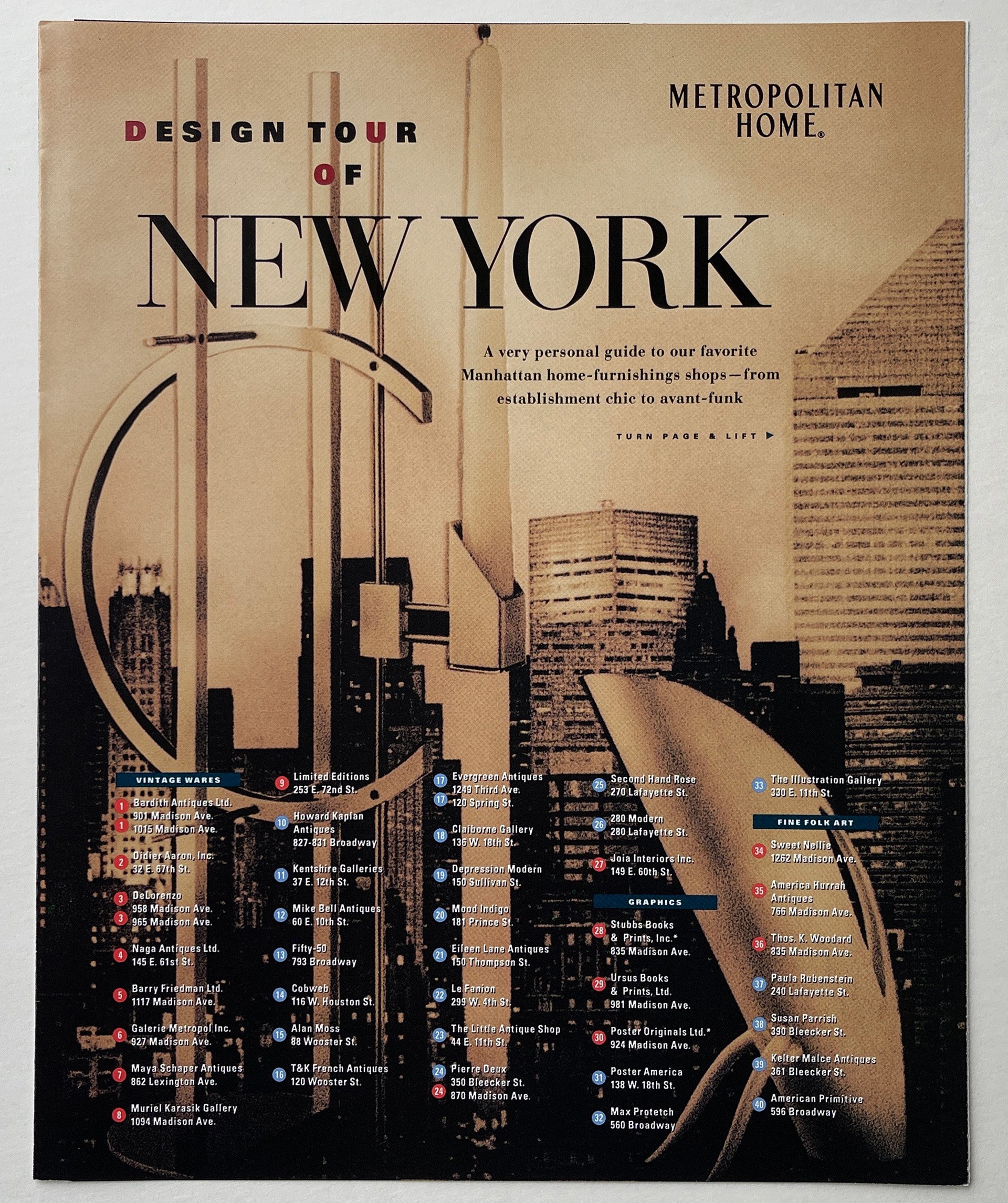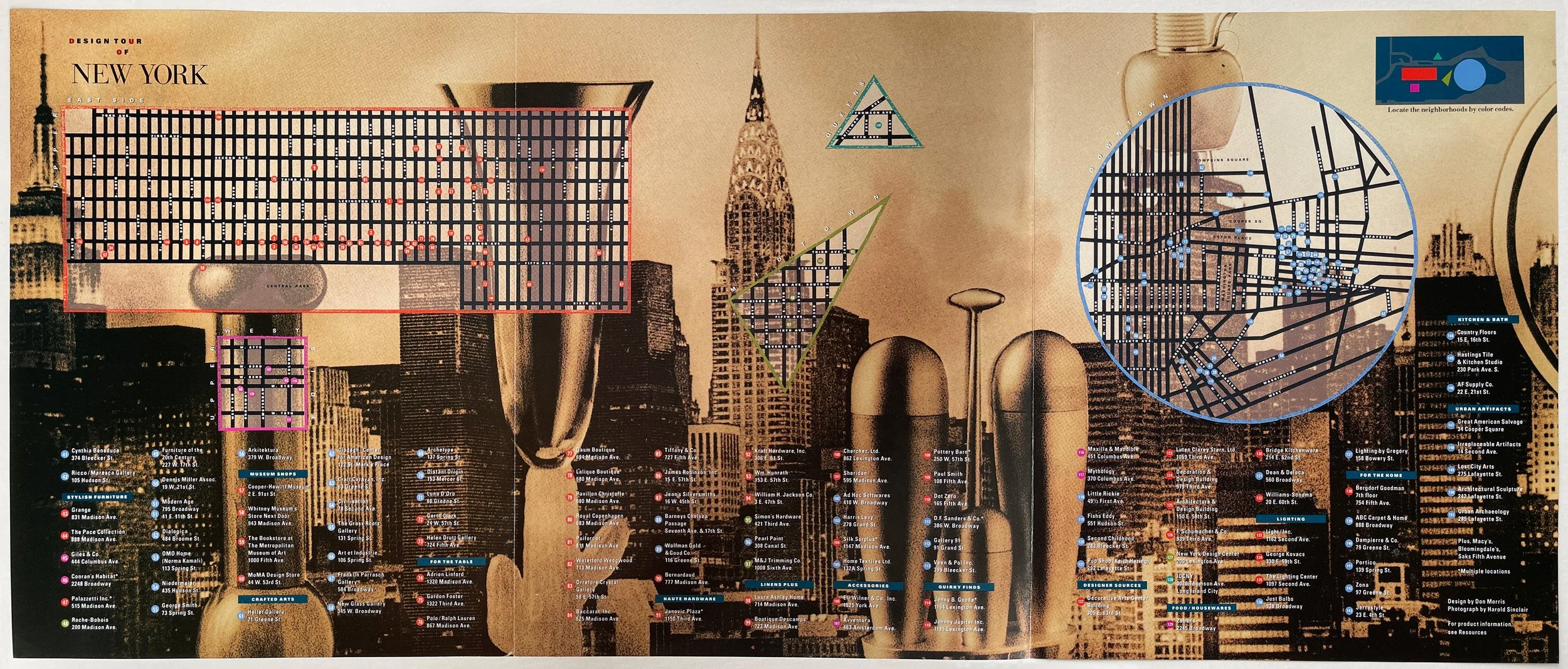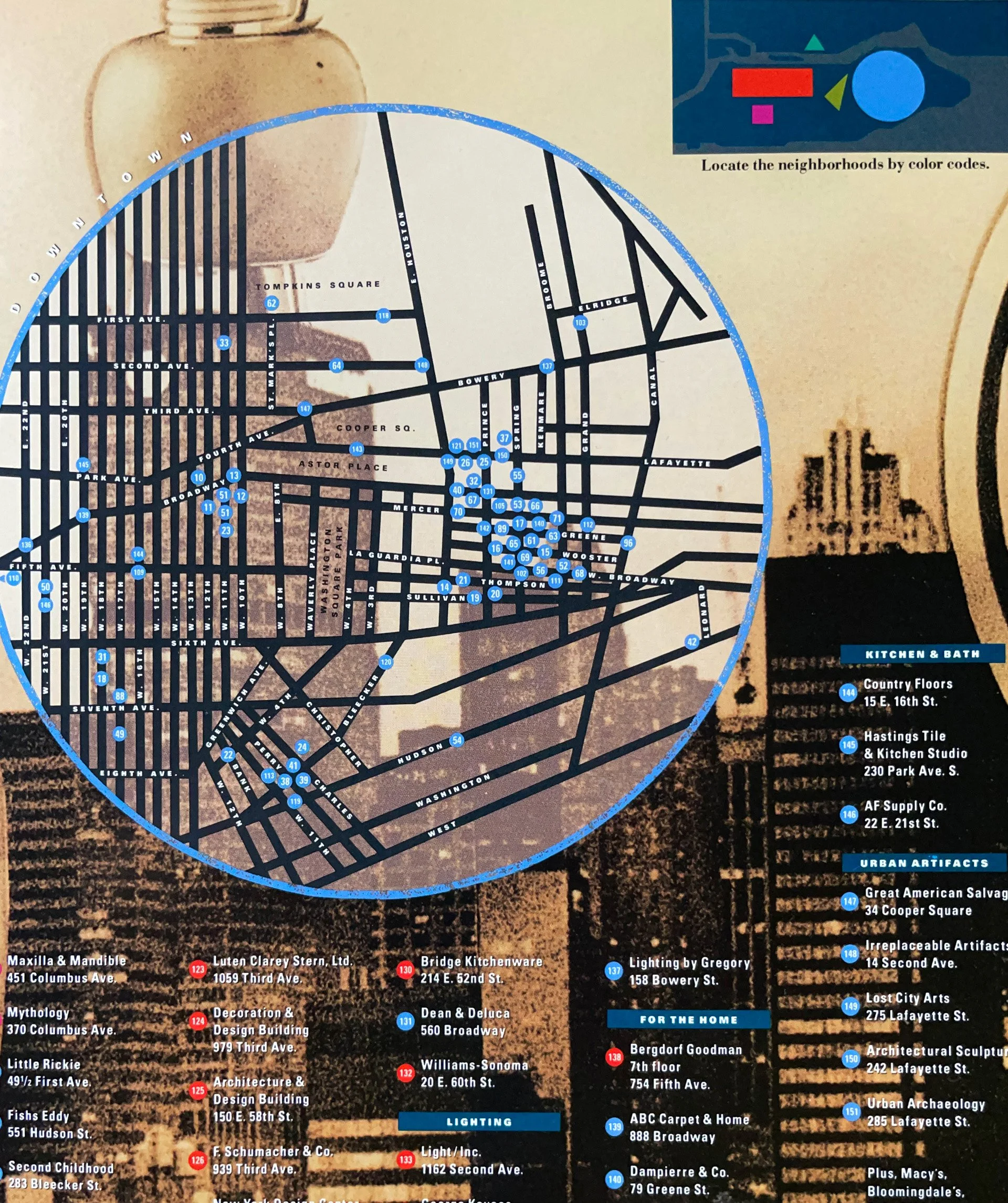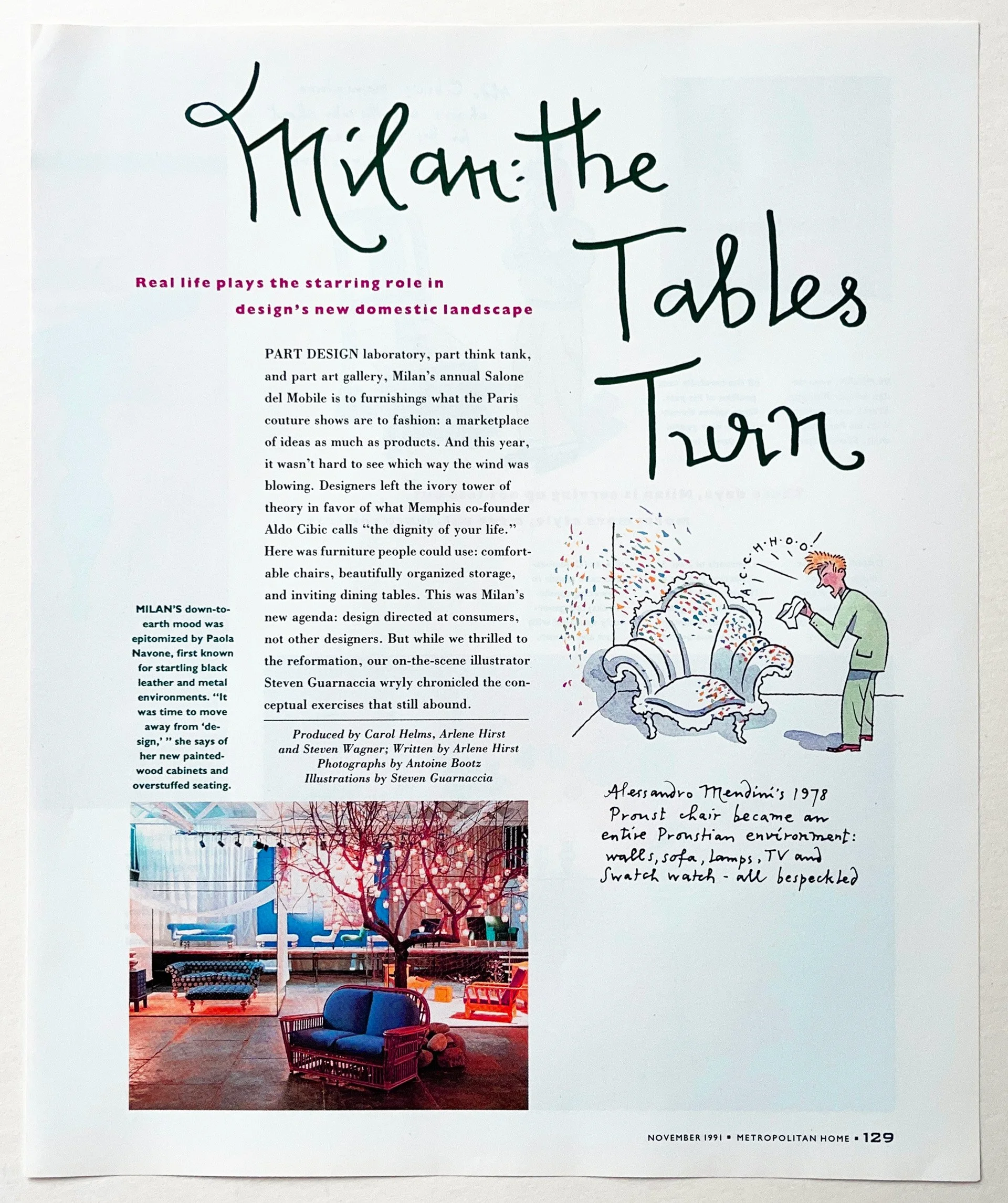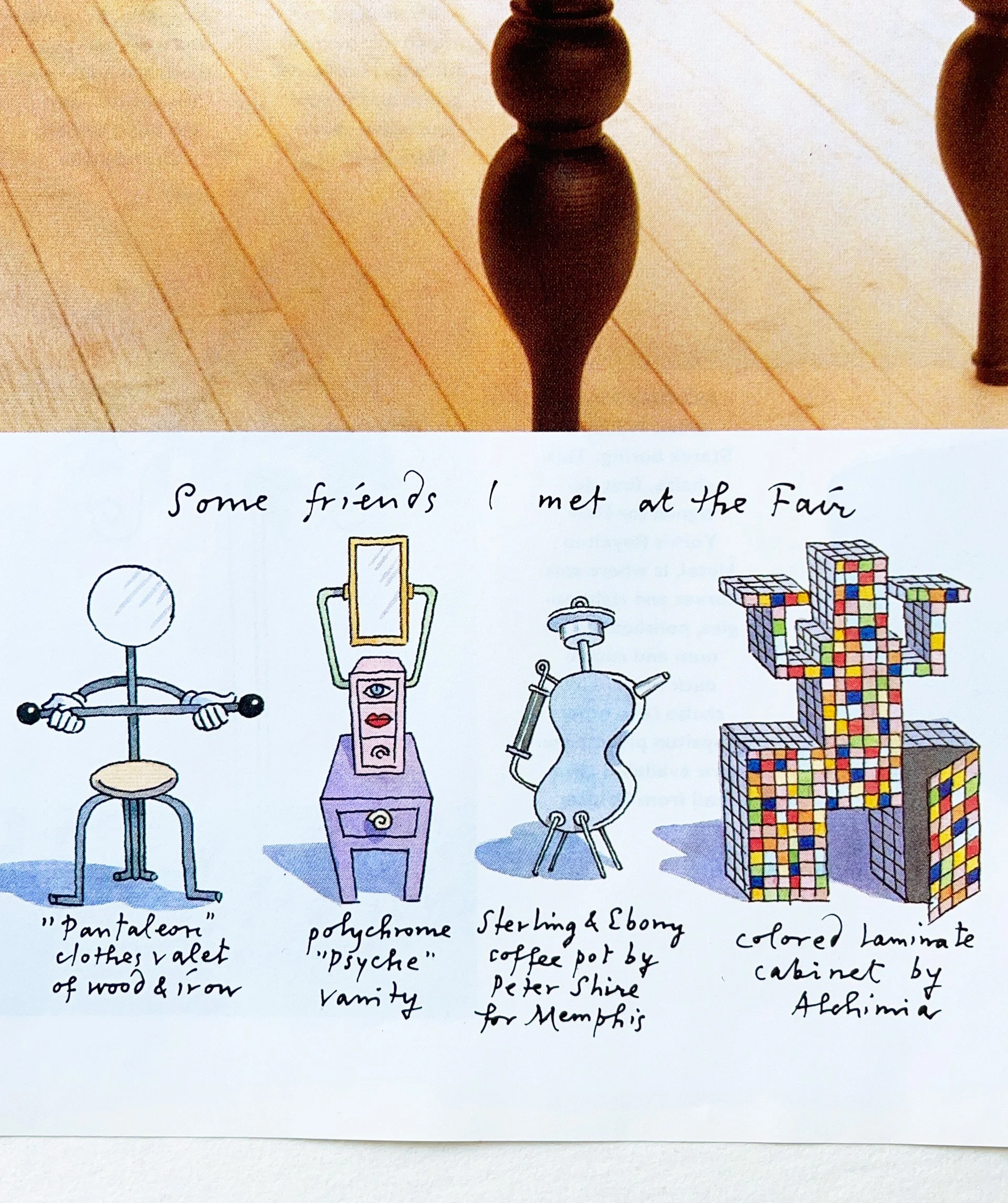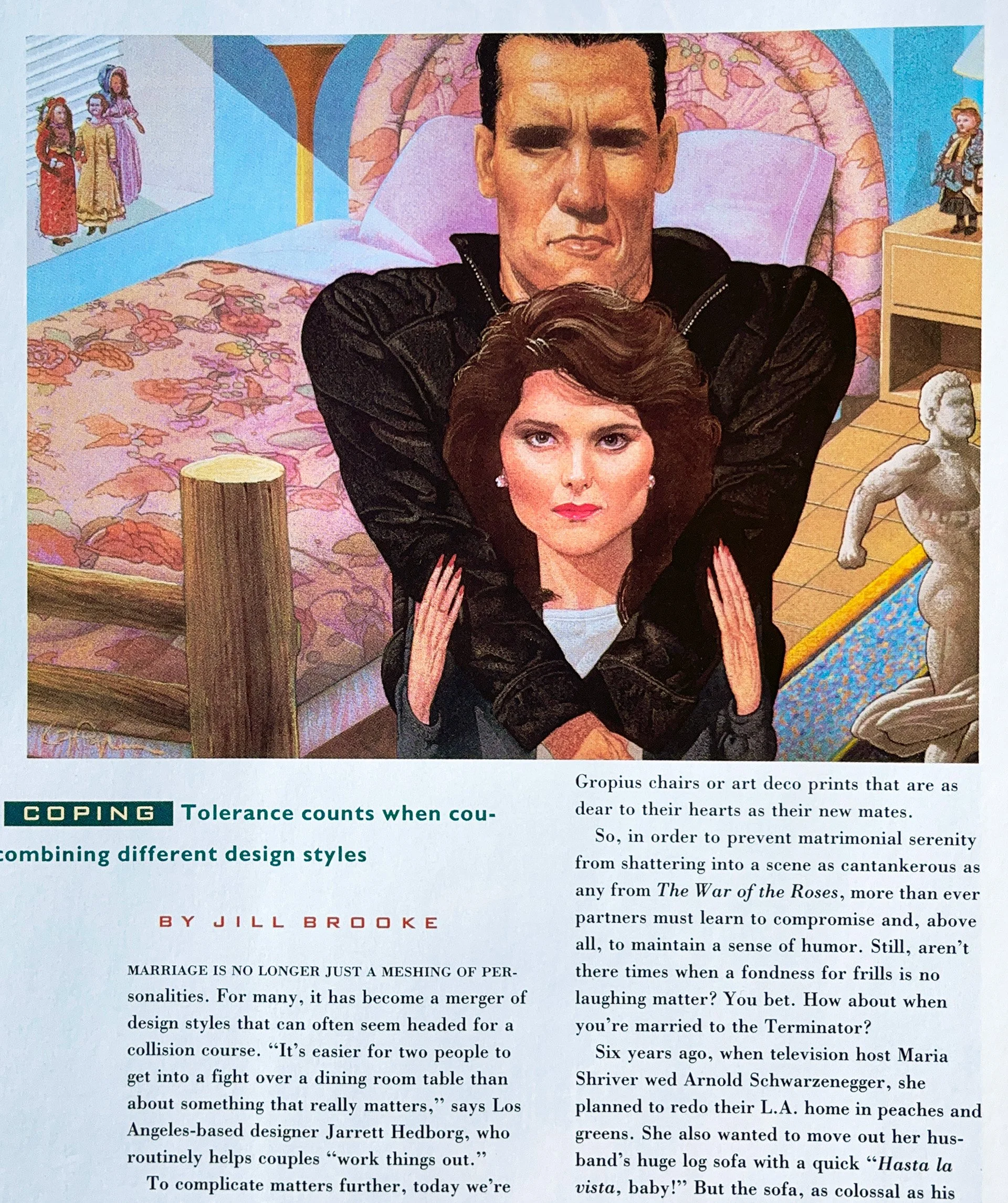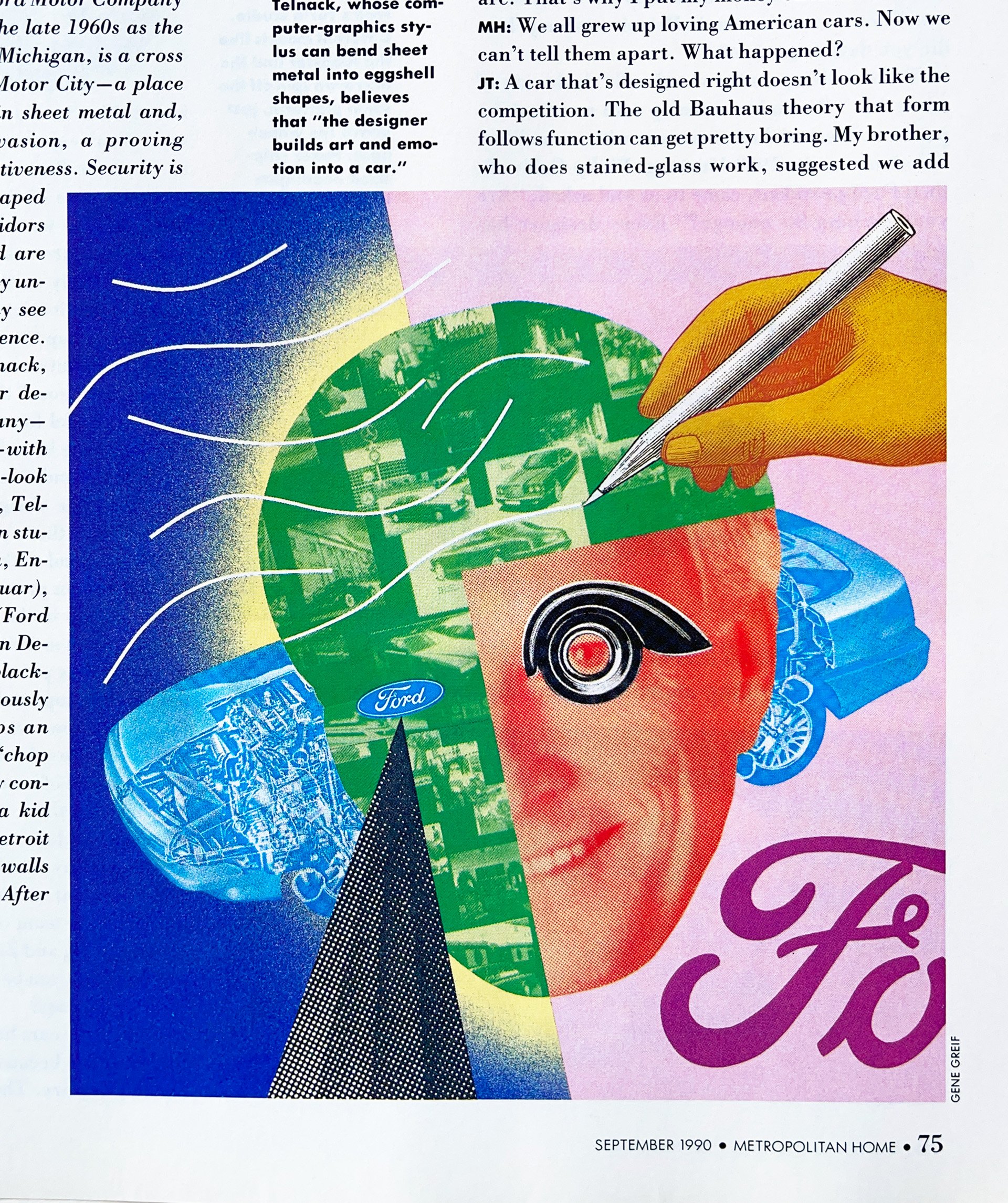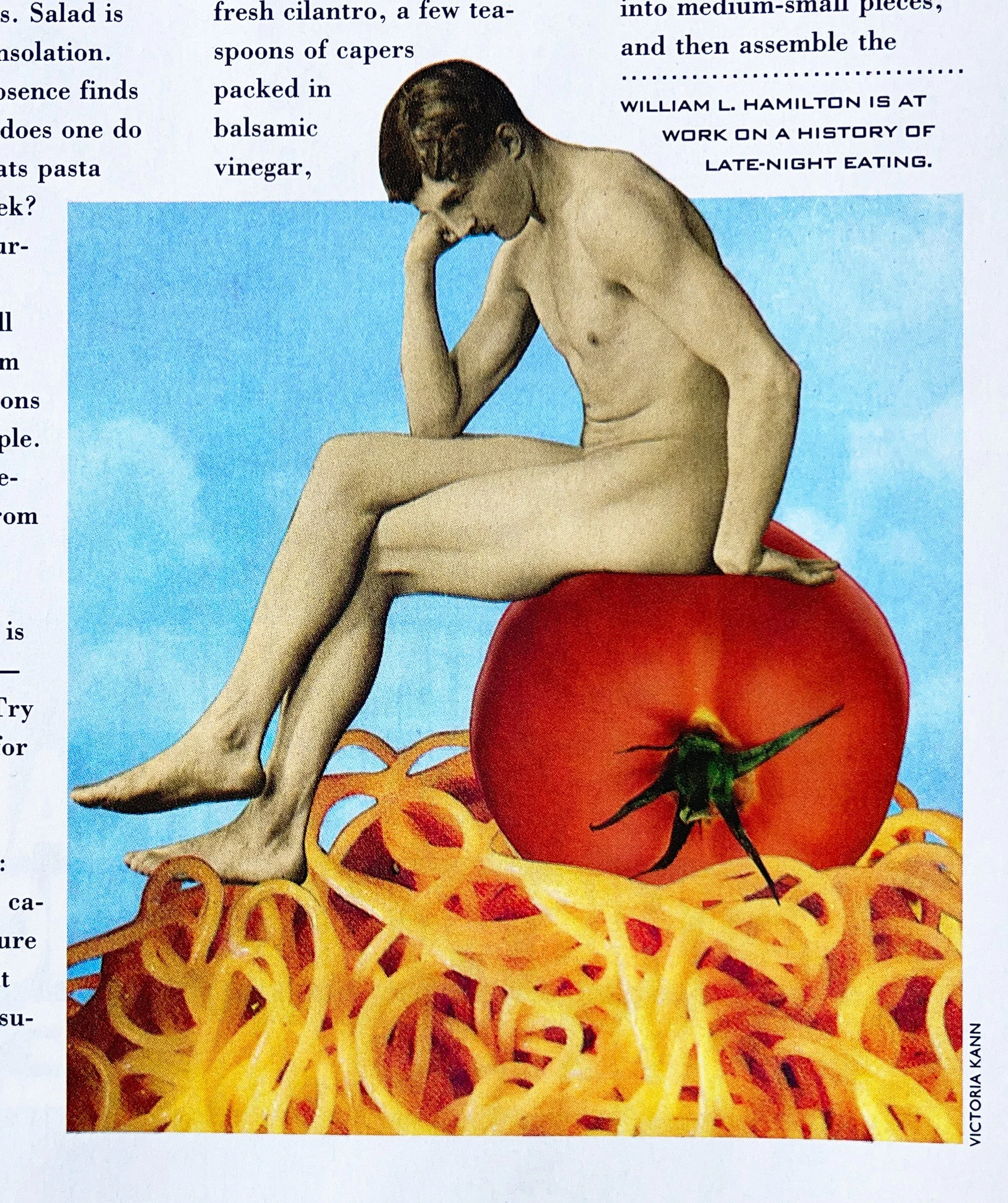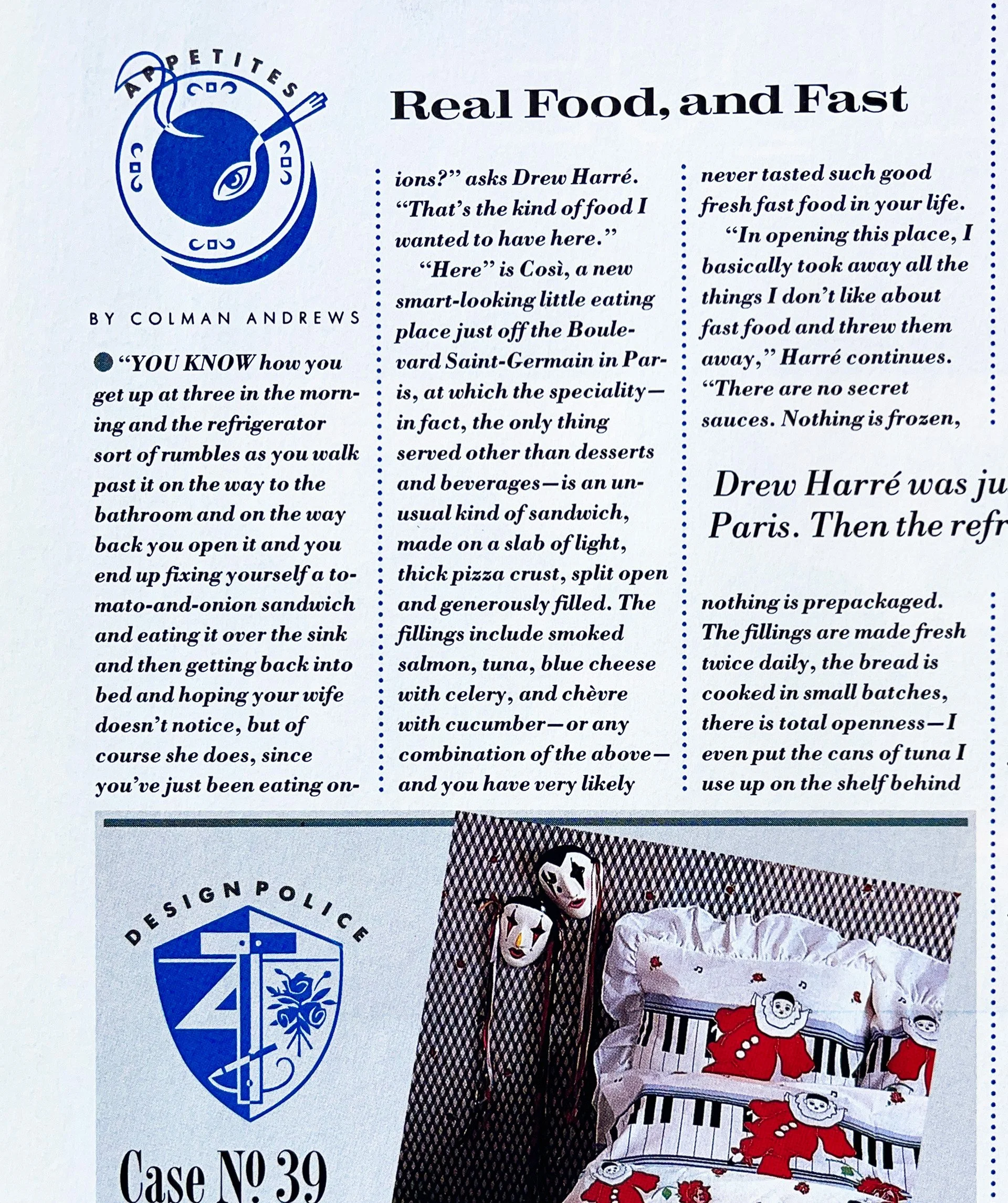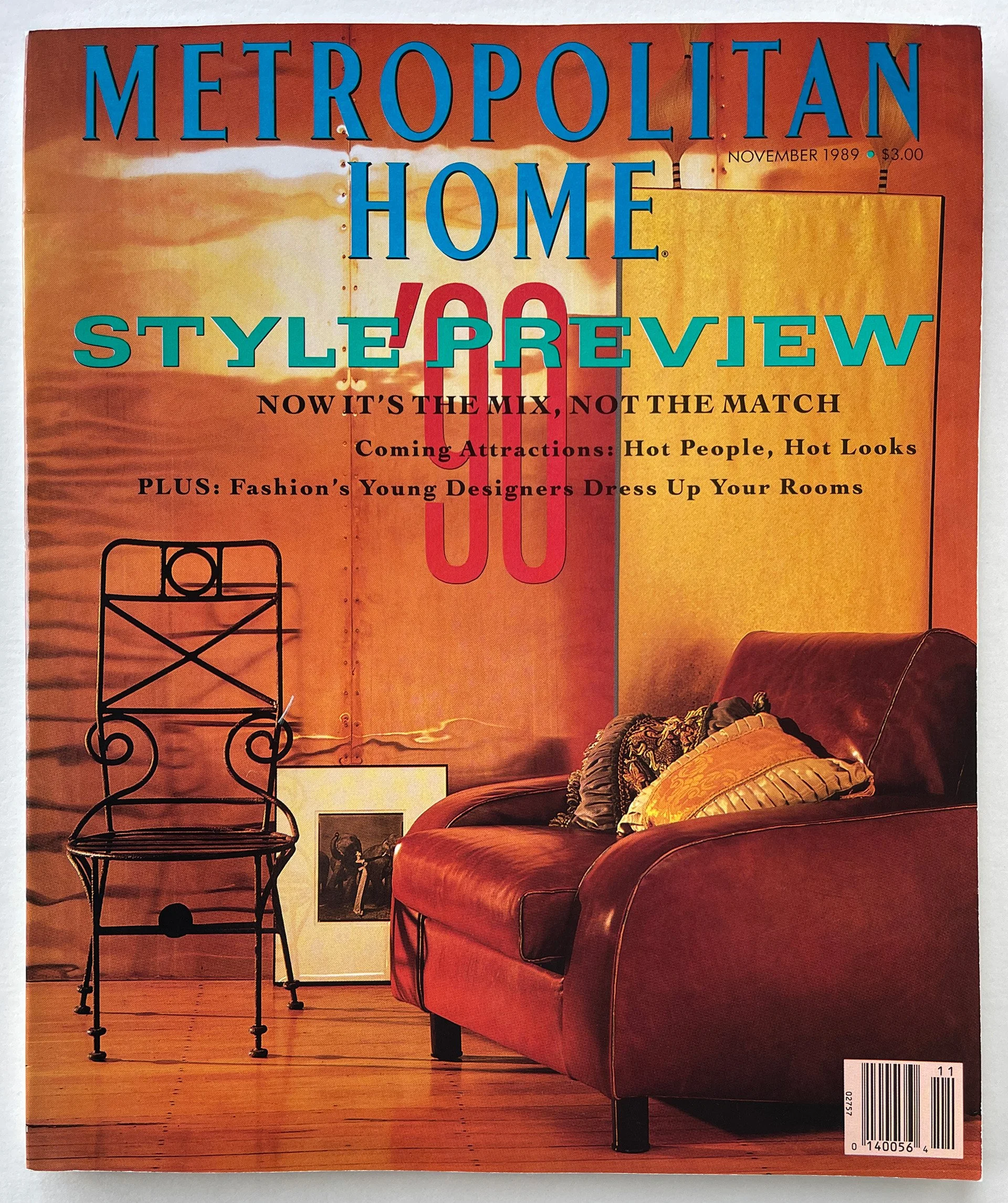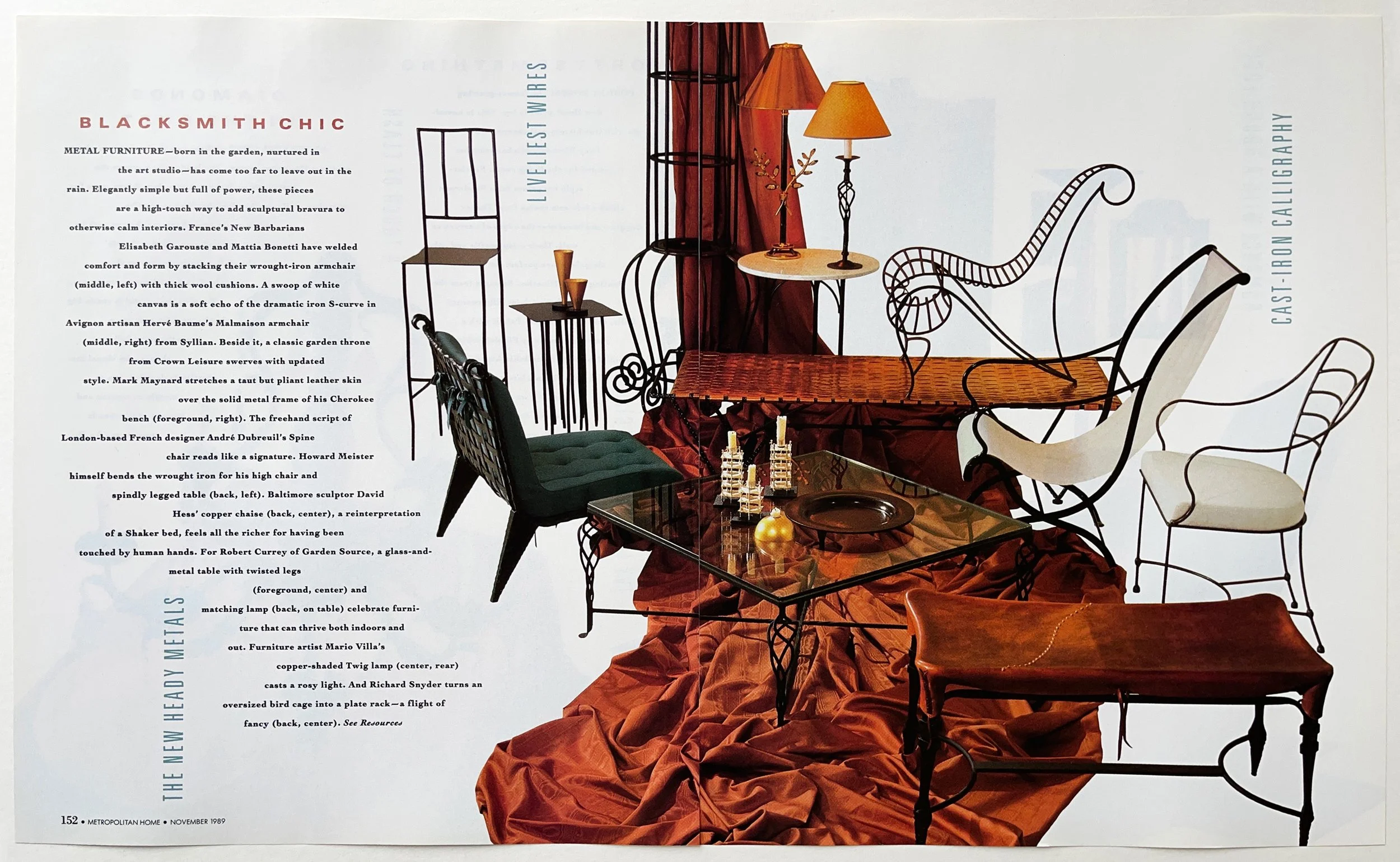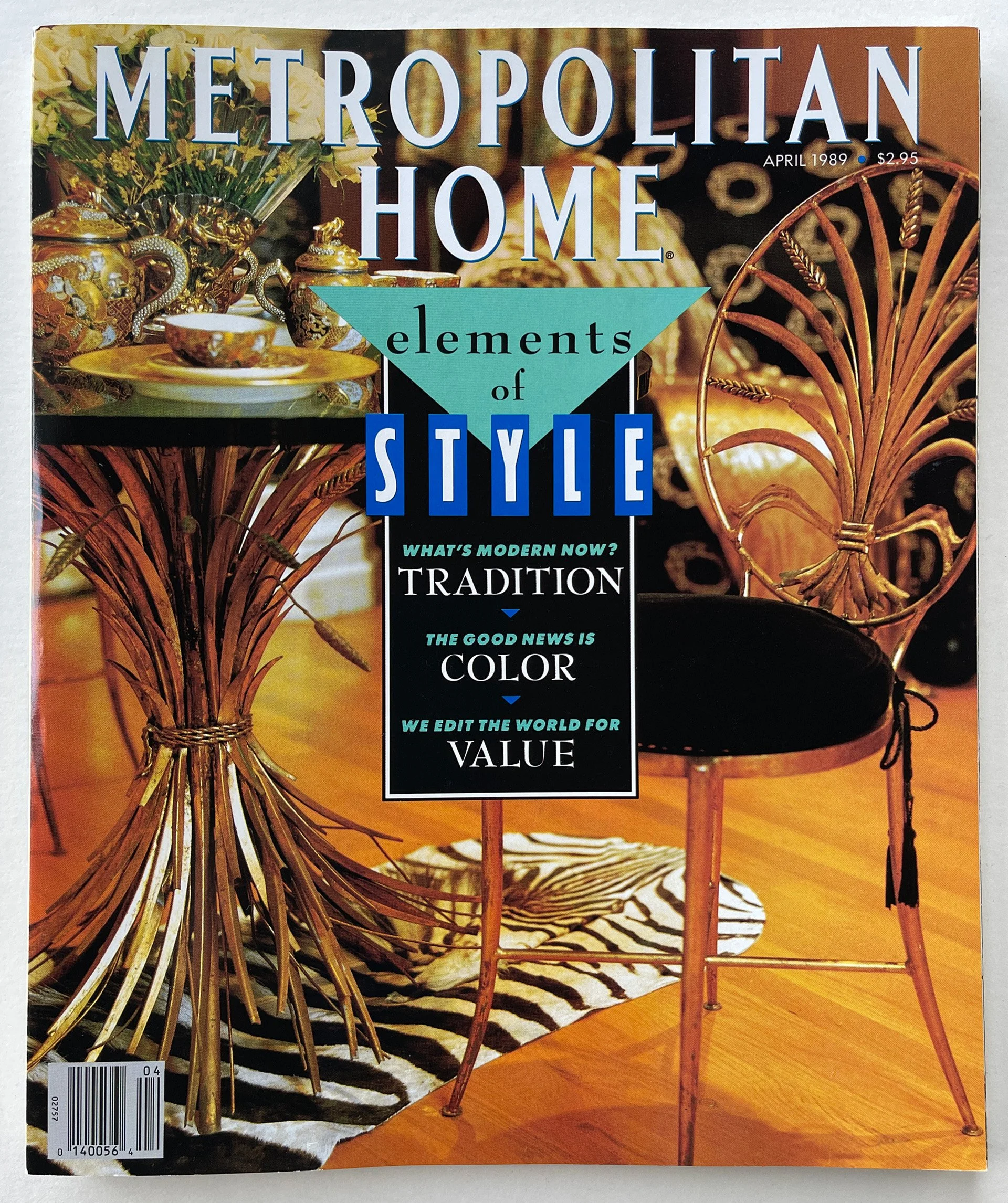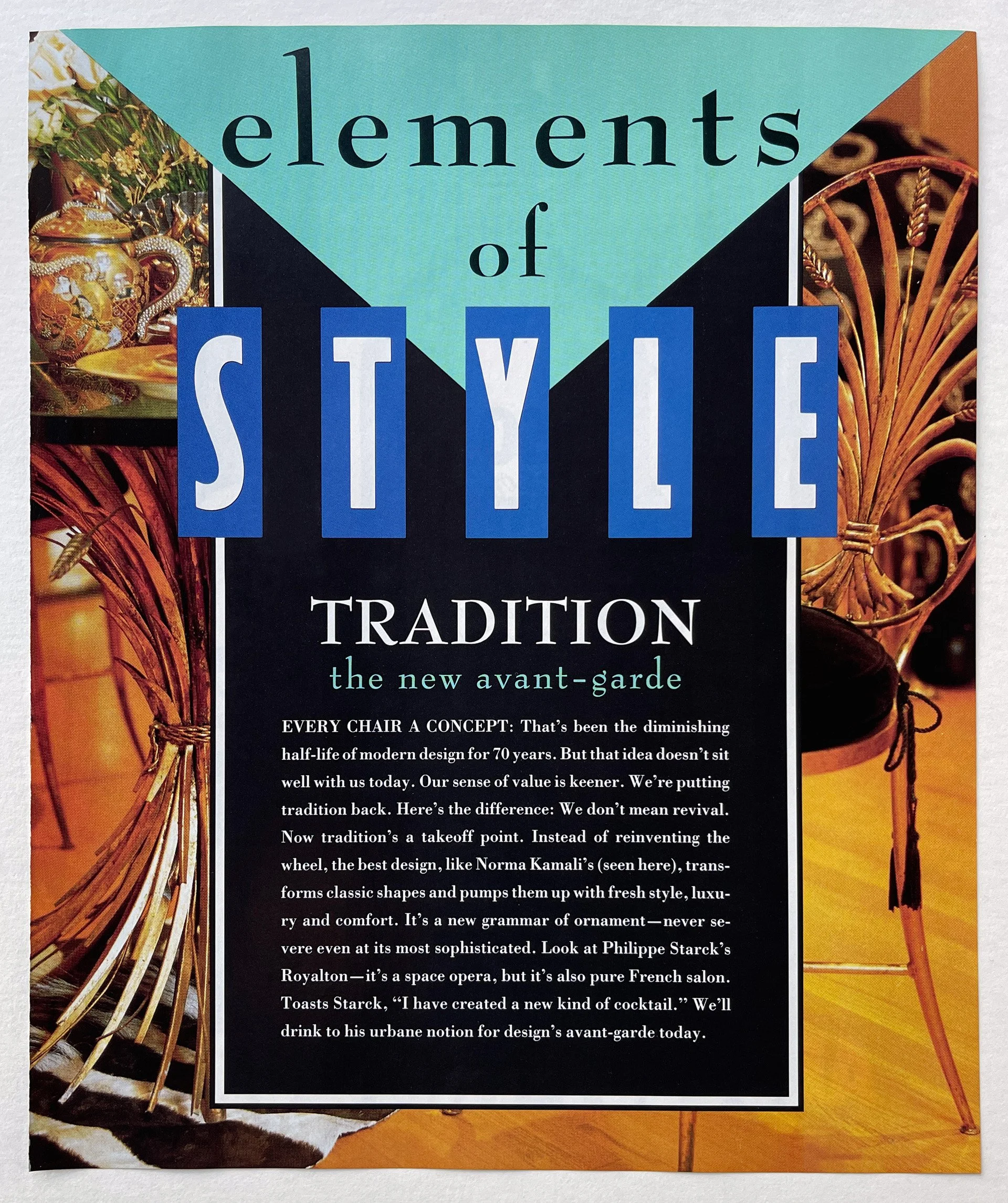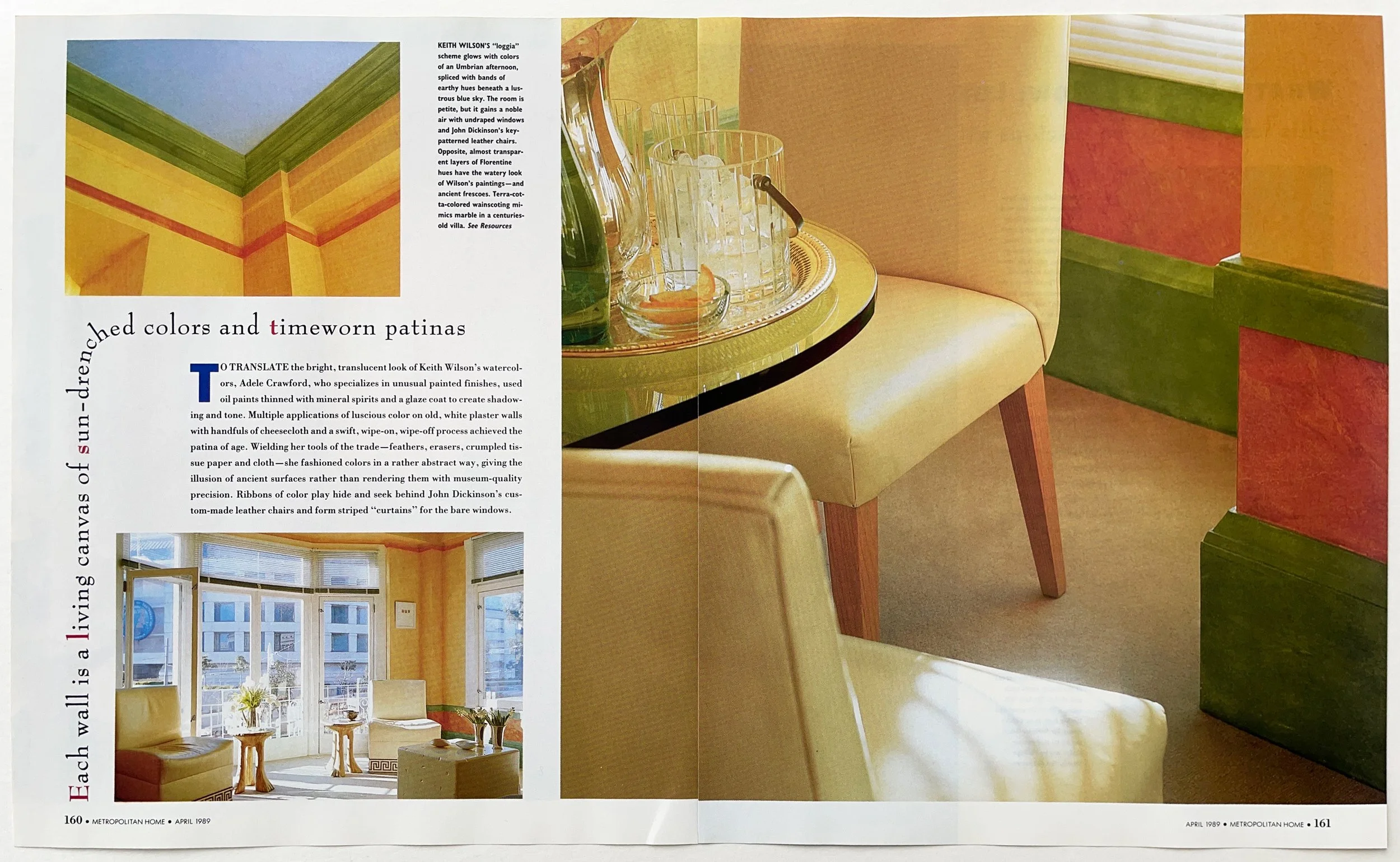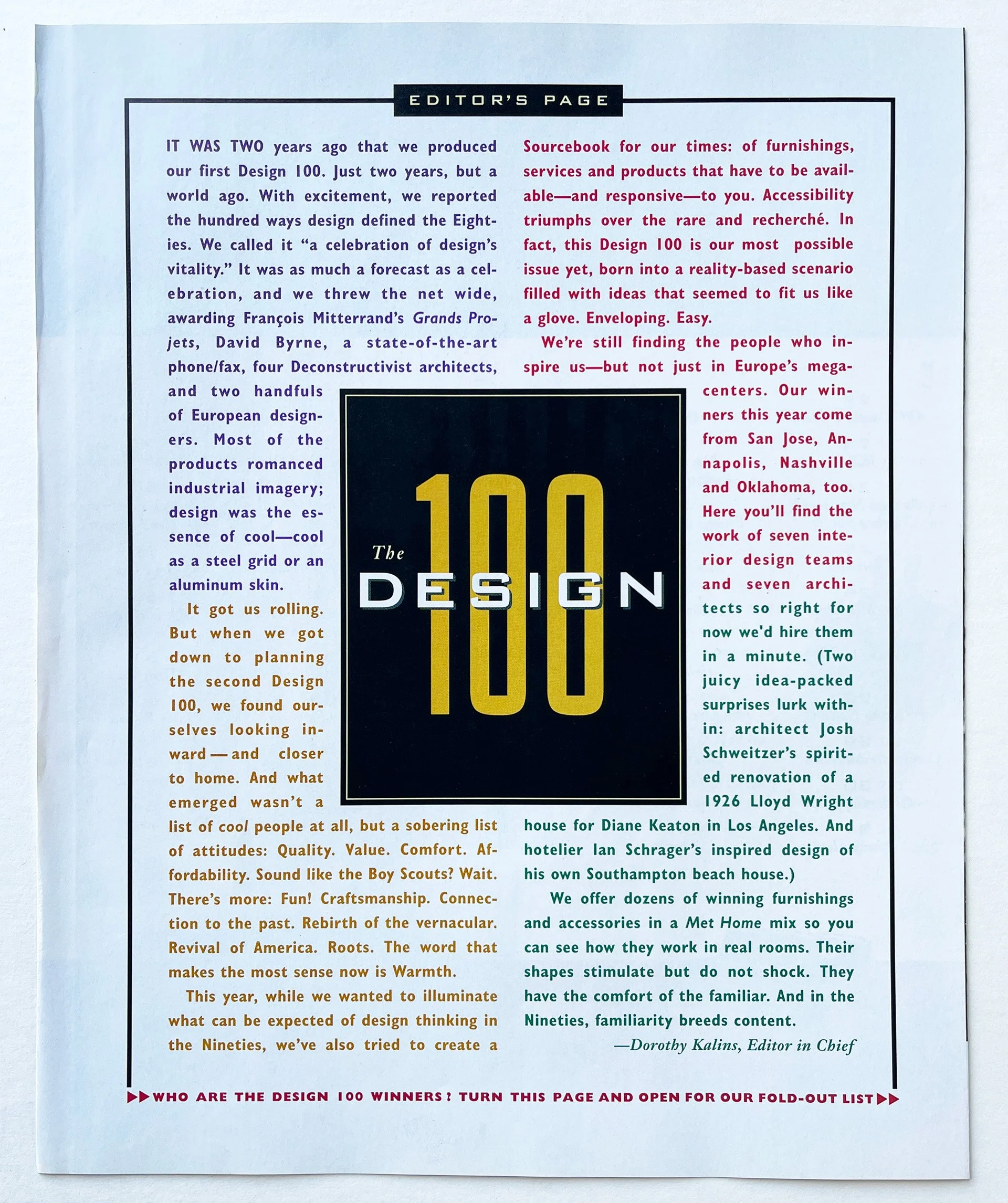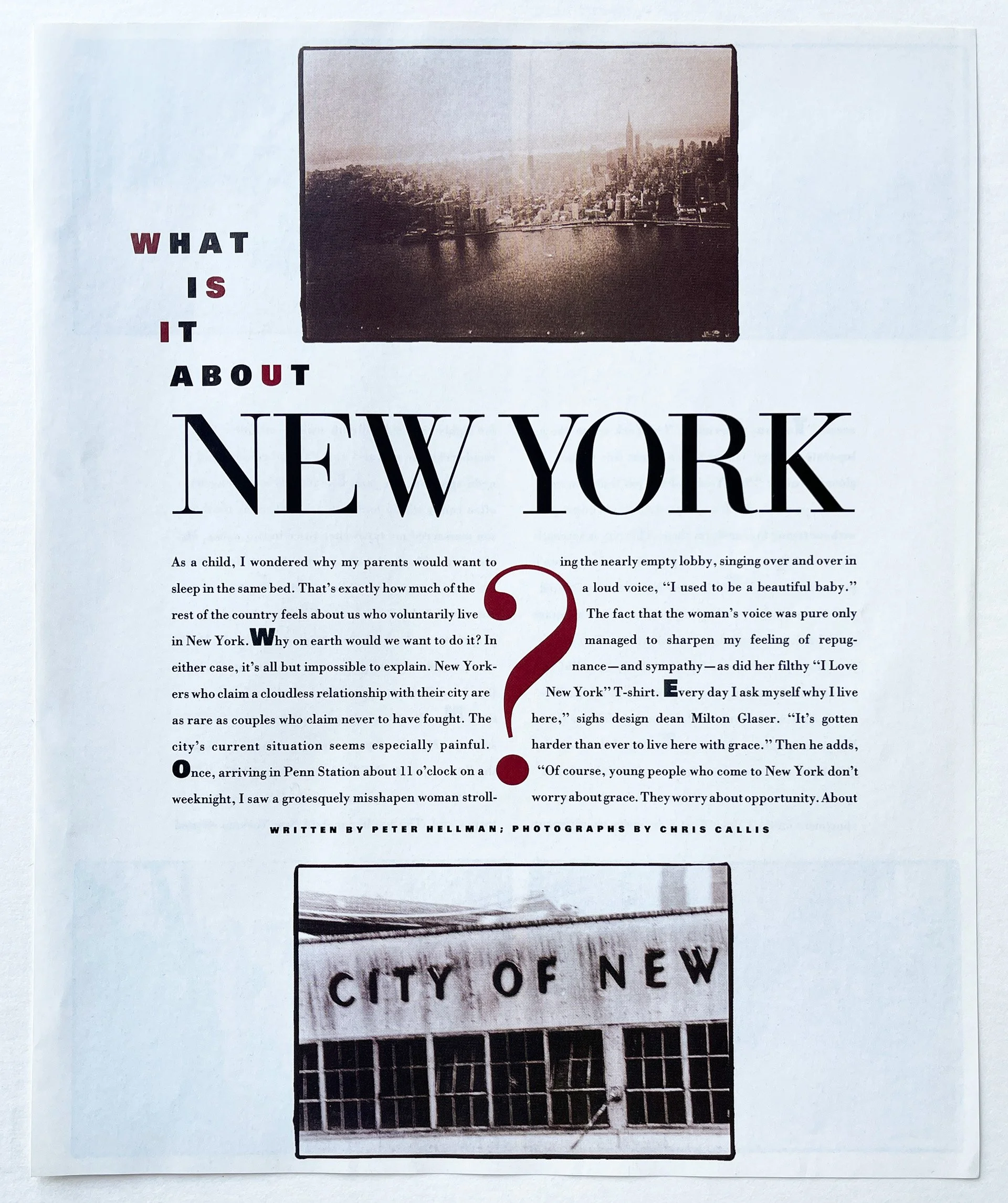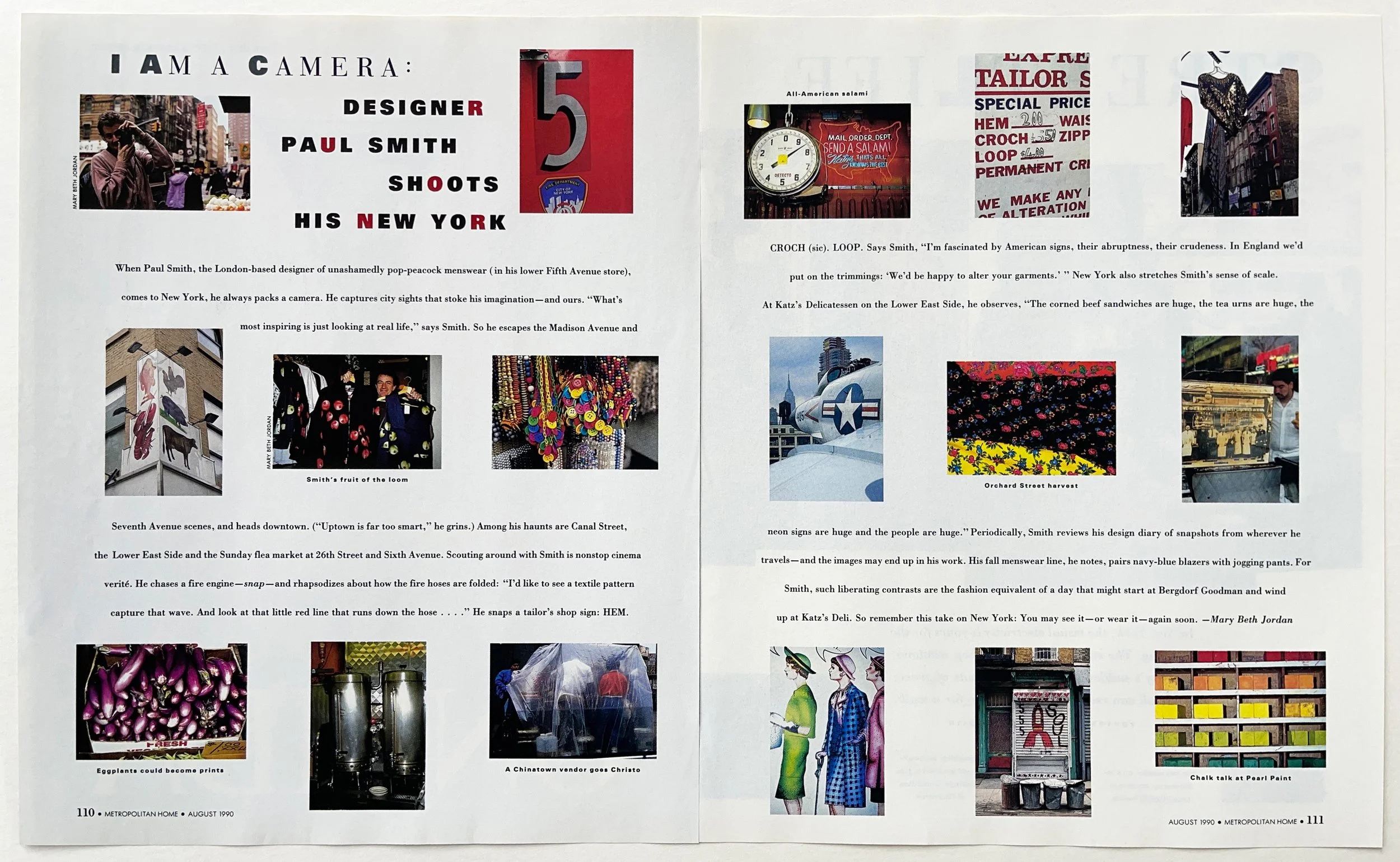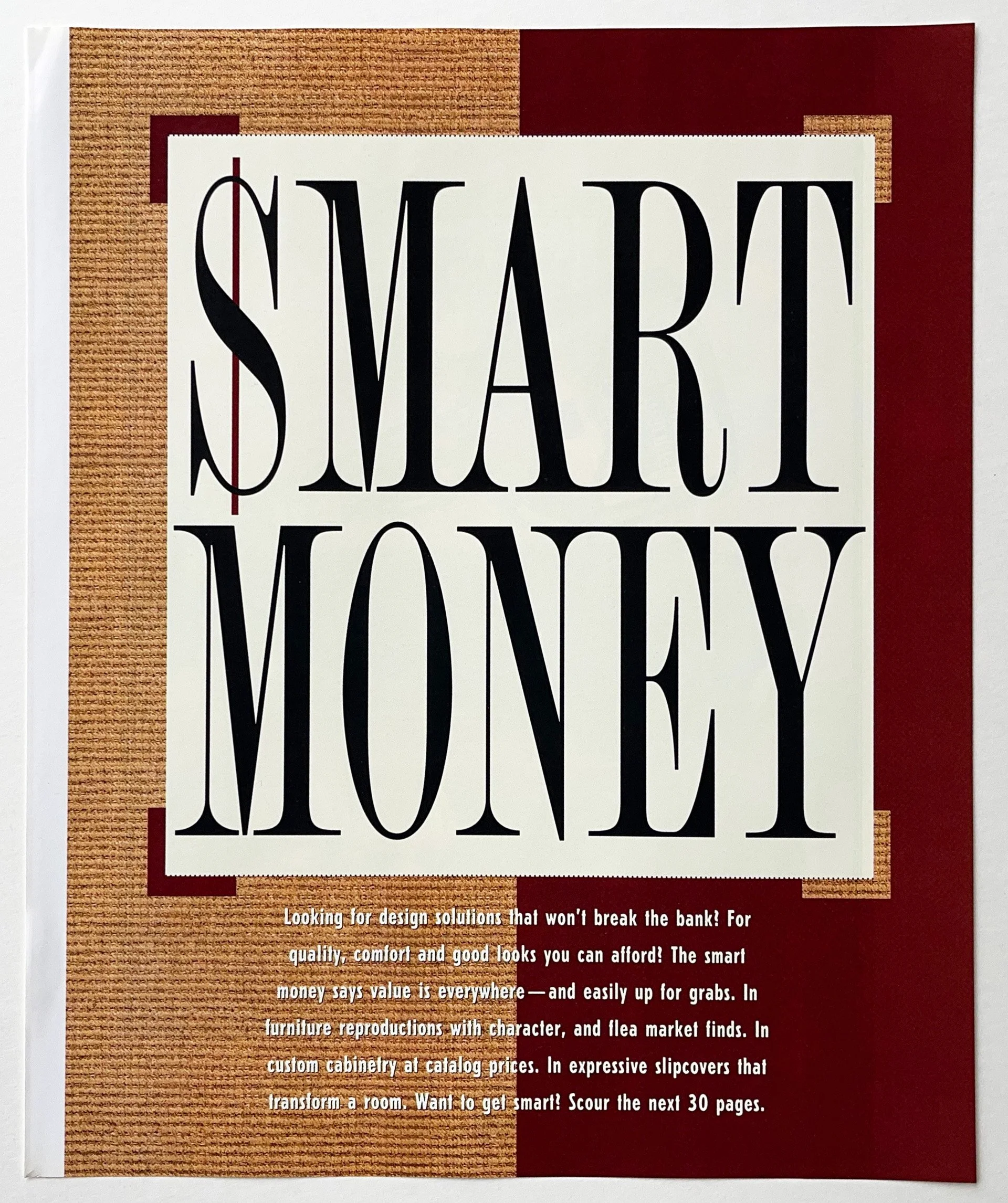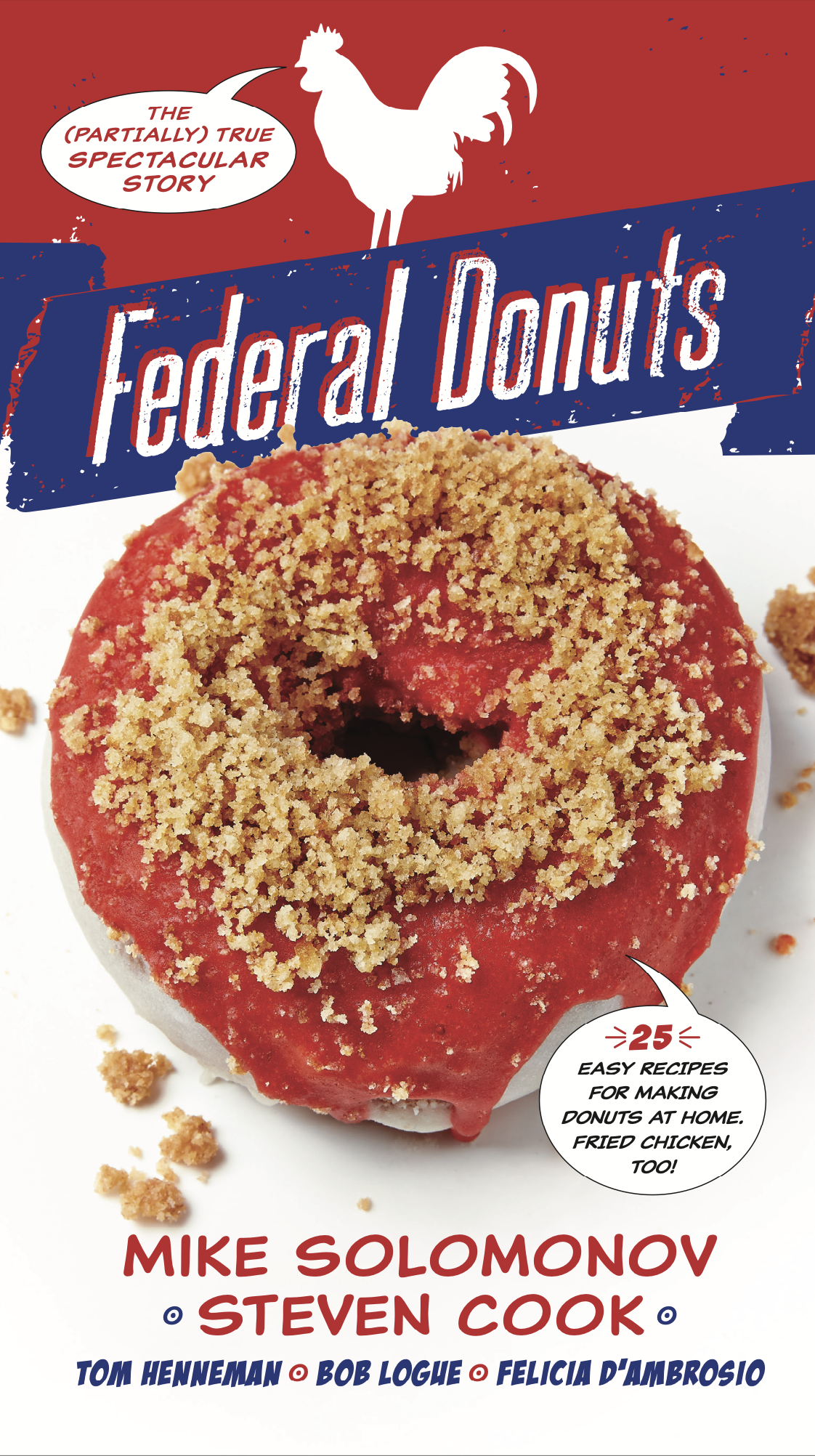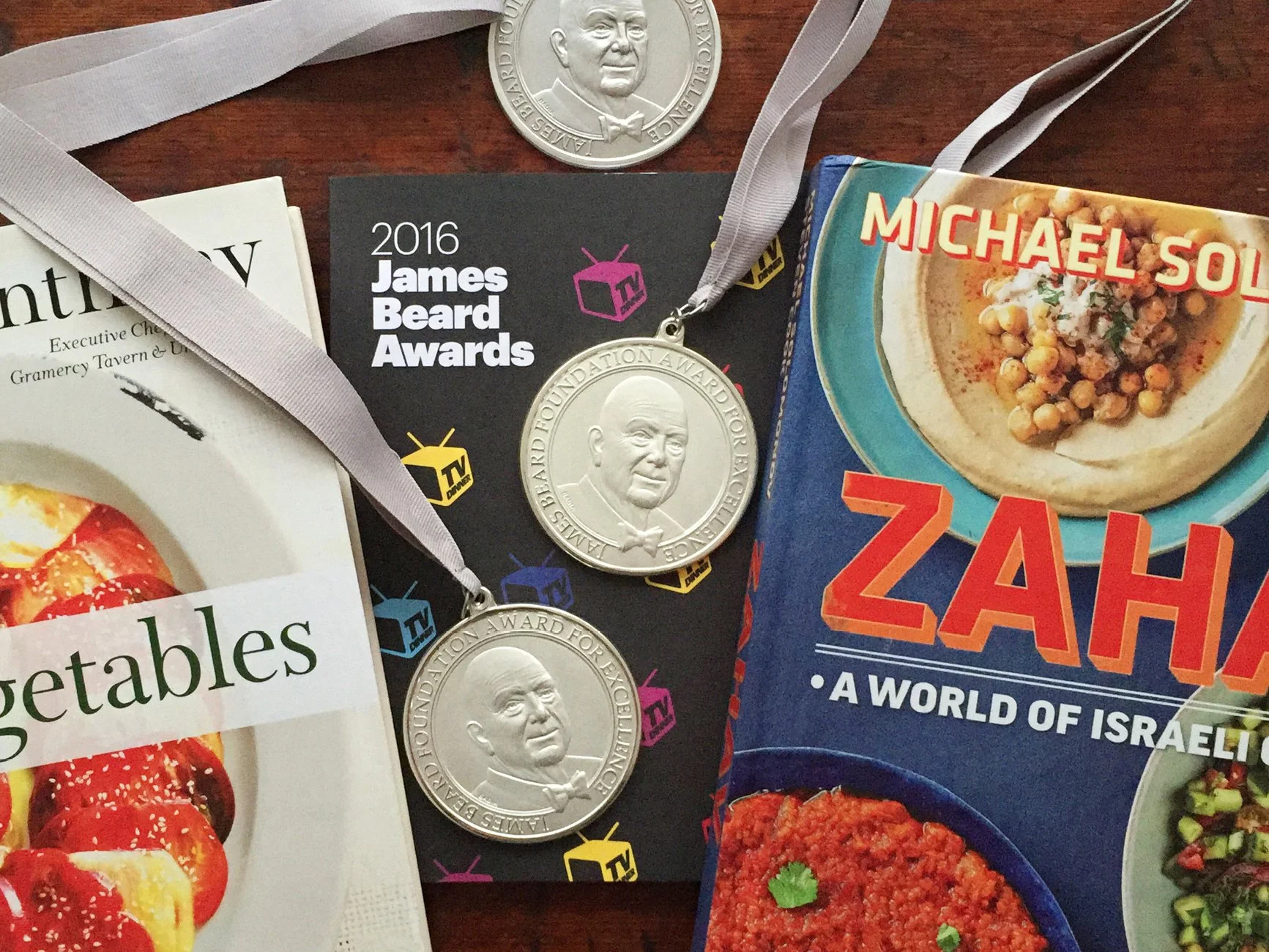The Prime of Mr. Neville Brody
A conversation with designer Neville Brody (The Face, Arena, City Limits, more).
—
THIS EPISODE IS A SPECIAL COLLABORATION WITH OUR FRIENDS AT COMMERCIAL TYPE
“Once you have broken down the rules, literally anything is possible.’”
—
In the business of magazine design, few names resonate as profoundly as Neville Brody. And, to this day, he lives by those words.
Renowned for his groundbreaking work and commitment to pushing design boundaries at magazines like The Face, Arena, Per Lui, and others, Brody is a true auteur in the world of design. We talked to him at the launch of his spectacular new monograph, The Graphic Language of Neville Brody 3.
Nurtured on 1970s British punk music, which rejected anything that appeared self-indulgent or overwrought, Brody found the perfect launch pad at The Face, the London-based music, fashion, and culture monthly, created by editor Nick Logan in 1980.
The Face inspired an array of fellow magazine rule-breakers, including the late Tibor Kalman, David Carson, and Fabien Baron, who calls Brody’s work “powerful, aggressive, and simple.”
Since then, Brody's journey in graphic design has been marked by a relentless, almost unforgiving pursuit of innovation. His magazine design challenged conventional norms and redefined visual storytelling. Brody’s design approach is characterized by a rejection of conventional grid systems and editorial hierarchies, and a willingness to break free from established design rules.
And he thinks magazines today are missing a giant opportunity:
“That’s the beauty of print, that you can’t achieve in the same way digitally. Digital is so commoditized. We’re not expressing content anymore. We’re just delivering it.
Neville Brody's legacy in magazine design lies in his fearless approach to challenging the status quo and his ability to capture the zeitgeist of his time. By pushing the boundaries of traditional graphic design, he not only influenced the look and feel of magazines but also inspired a generation of designers to embrace innovation, experimentation, and a spirit of creative rebellion. Brody's work continues to be celebrated for its enduring impact on the evolution of graphic design and its role in shaping the visual language of contemporary media.
“Graphic design is all about manipulating the message in order to deliver it. You never have an innocent message.”
Patrick Mitchell: I want to start by asking you an offbeat question: Is it a burden being the spokesman for your entire field every time you take a stage?
Neville Brody: I think it’s more of a burden being in a place where you think that someone else is that spokesman. It’s a difficult question because I don’t see myself as a spokesman for an entire field ever.
Patrick Mitchell: No, I don’t think you do, but I think everyone else does.
Neville Brody: Oh. That’s interesting because there are certainly other spokespersons, -people. You know?
Patrick Mitchell: Everybody just expects gravity from you. And sometimes I would imagine you just want to say, “I just did this because I just did it.”
Neville Brody: Well, sometimes you just do it because you love what you do. And thinking about it, sometimes, is something that happens in retrospect. So it’s not always logical. But at the heart of what I’ve been doing has always been a kind of rigorous structure. And then you improvise within that framework.
So that’s been all the way through. But honestly, just to come back to that question, I think every graphic designer is in a place of being a spokesman. Because I think graphic design is all about manipulating the message in order to deliver it. So you never have an innocent message.
All messaging is about manipulation in one sense or another, even if it’s unconscious. And graphic designers are particularly, I’d say, guilty. But also blessed with that role of turning invisible ideas into tangible concepts. And each time a designer is involved in that process, you’re being quite political, actually, because you’re bringing the designer’s interpretation of that message to play.
So the font you choose, the colors you choose, the images you curate, all of this impacts the way anyone will look at the world. So, yeah, we’re all spokesmen. I’ve just put my neck on the line.
Patrick Mitchell: I was looking at the first edition of your first book, The Graphic Language of Neville Brody, and I paid $85 for it in 1988. And your new book, The Graphic Language of Neville Brody 3, is $85 on Amazon right now. You’ve actually given quite a discount, because in 1988 dollars, your original book is $225. So thank you for that. And now I will hand it off to Deb.
Debra Bishop: Well, I’m hoping that you don’t mind if we go back in time a little bit to start, as we typically do. So, Neville, you received your early education from Minchenden Grammar School, focusing on A-level art. Can you really choose a major that early on in the UK?
Neville Brody: Two things. One, it wasn’t a grammar school. Actually, it was what we call a ‘comprehensive.’ And a comprehensive wasn’t streamed in the same way as a grammar school. You didn’t have to do an exam to enter.
Patrick Mitchell: What age are we talking about?
Neville Brody: We’re talking about the age of 11 to 18. So it’s a proper secondary school and we did O-levels and then A-levels—O-levels at 16, A-levels at 18. And you don’t major either in UK secondary education, particularly. That’s a very American—or North American—thing.
But when you get to A-levels, you do start to be much more selective. And I did English, art, and technical drawing. So I learned how to do bits of machinery by hand, as bits of technical drawing. And that had a huge impact on the fact that, you know, graphic design is creativity and engineering.
But, in all honesty, I skipped school from the age of 14 to 16. And wasn’t exactly an innocent school child at that time. You know, it’s that ‘kidult’ thing of kids in inner cities growing up quite quickly. And doing things like starting smoking at 11, which we were doing here, et cetera. But we’re not going to go into that.
And then I crammed revised at the end of that and came fourth in the score at which point my teachers hated me because they felt that the only way to achieve anything is by applying yourself 100 percent of the time and they were not very flexible.
Patrick Mitchell: Were your parents aware you were skipping?
Neville Brody: I should ask them. I should ask my mom, you know. I think she trusted me to manage it the way I felt I needed to manage it, rather than try and suppress my instincts. She probably knew I was smoking at 11.
Debra Bishop: So you’ve always been pushing the boundaries as a young kid. What was your world like growing up in Southgate in the 1960s?
Neville Brody: Well, Southgate was a North London suburb that was created around an extension to the underground line. It was built in the 1930s, most of it, and it was all similar, patterned housing—very rural, suburban, urban. And at the same time, it was the center for a lot of misbehavior. And there were skinheads at the time—a lot of pre-punk stuff going on. There were hippies. So a lot of the sub-cults.
And I grew up at the tail end of the hippie movement. We weren’t proper hippies, but we weren’t other sorts of tribes. And Southgate itself was obviously boring. But there were a lot of pubs, and for some reason at that time we were allowed into pubs at the age of 12 or 13 without having to show identities, because we all looked a bit older for some reason.
So growing up there, it was an interesting space and a lot of my colleagues that I’ve met since, grew up in a similar area. John Wozencroft, who wrote [my] first few books, grew up about a mile up the road from me. And people like Keith Levene, who ended up as the original guitarist for The Clash, and then worked with John Lydon [aka “Johnny Rotten] on Public Image Limited. And he was a mate of mine growing up, so there was this sort of interesting thing about the suburbs being the center of creativity at that time.
Debra Bishop: It’s unusual. It sounds like the environment and what was going on there at the time was a catalyst for you loving art and beginning the idea of what you wanted to be.
Neville Brody: Well, to be honest, I was drawing before I was walking. So I was picking up a pen or pencil way before I could even stand on my feet. And so for me, there’d never been a question of what I was going to do. I was never going to be a train driver, or a doctor, or a lawyer. I was always going to be an artist. And then it was just a decision then of what form that would take.
Interior spreads from The Face
“Going to art school is all about finding yourself. But an art school is there to support the development, not to impose the development on any student.”
Debra Bishop: I think drawing is such an underrated skill. Today, especially. So were there any inspirations at that time that you can remember?
Neville Brody: Just coming back to the drawing thing, when I took over as head of program for visual communication at the RCA (Royal College of Art), the first thing I did was to try and reintroduce proper drawing. I think it’s such a critical skill, which becomes ever-more distant with digital technologies and social media. And the instant gratification of our cultures now means that, you know, sitting down to take the time over drawing seems a bit of an anathema, but around that time the biggest influence, I think, on me was what was happening in music.
From the age of 10 or 11, I discovered reggae. And that was really taking off in the UK. And not only was it a huge impact on music culture, but also visually with the record labels being very, let’s say, low-resolution, often done by hand rather than printed en masse.
And that, coupled with gatefold album sleeves. And that led me to become very interested in people like Roger Dean and Hipgnosis. And actually, I ended up, after leaving college, spending some time working with Hipgnosis.
Roger Dean, incidentally, I’d sent my record covers into a book called the Album Cover Album, of which he was the editor, and he looked at my work, apparently, and said, “God, any baby could draw this.” And he rejected it all.
Debra Bishop: I have both of those books.
Neville Brody: I actually did the book of Hipgnosis. Around that time I did a Pink Floyd cover, which I never put my name on. I shall share that privately one day. But in Britain, the music industry was the biggest opportunity for young designers to really find a platform that supported them and allowed them to publish their work. Especially when punk came along and in almost every bedroom in London there was a record label happening. It was an incredible time. At one point there were 200 reggae singles coming out every week in London!
Debra Bishop: I loved record album design. I aspired to that. But you know, by the time I got there things were becoming very small. In many ways.
Neville Brody: Yeah, the biggest influence around then was probably the Surrealists which would have been, you know, Dali. It would have been Escher, particularly. And that gradually got replaced by people like Richard Hamilton, who was a very major influence on my work, William Burroughs, Dadaism.
Patrick Mitchell: Yeah, I have to thank you, because I was not aware of Wolfgang Weingart. But, my God! I went off on a tangent after reading in my research about him being your influence and it’s just like, “Whoa!”
Neville Brody: Well, Wolfgang Weingart—if you look at all that was happening in California at the end of the ’80s or even the, kind of, mid 80s, was all coming out of Weingart’s influence.
Patrick Mitchell: April Greiman? People like that?
Neville Brody: Exactly. Well, she studied under him. And that set the whole pattern for all of the early digital work that was coming out at that time.
Patrick Mitchell: Jumping back to college, you attended the London College of Printing, which is now the London College of Communication, which our friend Alex Hunting attended. What age are we talking about now?
Neville Brody: It would be 19, I think.
Patrick Mitchell: Yeah, so you’re just finding yourself and you’re trying to feel comfortable about an approach to your future, and it sounds like your teachers were very harsh. They condemned the “uncommercial quality” of your work. But at that age, how does that not wreck you at such a vulnerable, fragile place in your life?
Neville Brody: Well, partly because I’d made the choice to go there. I thought if you’re going to learn about anything, you need to probably go to the most strict learning environment to be able to take that on board. And, you know, like jazz, you have to really learn your instrument and the tonal scales, et cetera, in order to then improvise.
And I thought, “Well, I’m not going to be able to undermine or challenge design if I don’t really understand the fundamentals.” I’d been to a foundation course at Hornsey College of Art in London. And Hornsey was the location in the late ’60s where all the student uprising started in the UK. It had been largely neutered by the time I went there, but there was still an undercurrent.
And the guy who sat behind me, he was going to the early Sex Pistols concerts, which I rejected completely at that point. But he turned out to be Mike Barson, who was the keyboardist and songwriter for Madness. So there was a lot of that going on.
The Slits punk band went to Hornsey and one tutor said the probably the best thing to me ever, which was that, “The difference between becoming a designer and becoming an artist is that a designer needs someone else to set the brief.”
And that made me understand that actually I needed to become a graphic designer. And have something to react with—either along with or against. Or use it as a provocation for thinking. To try and bring artistic sensibilities to a graphic design space. And then the decision was—London College of Printing had the reputation at that time of being the strictest environment for learning graphic design in Europe at that point.
Patrick Mitchell: Yeah, and I should say, it wasn’t all their fault. You invited this upon yourself. There’s a quote that says, “If my tutors said they liked something I was doing, I would go away and change it.”
Neville Brody: Yeah, well that was an evidence of me being accepted by a generation that I didn’t want to be accepted by, with the values that they held close. And London College of Printing was a very commercial graphic design environment. And it had rules. It said, “If you’re going to do this kind of project, in this kind of material, at this size, for these people, this is the way you must do it.” So it was all driven by a set of internal regulations.
And I was saying, “Well, you know, the world has changed. And the world constantly changes. So we need to change the way we communicate.” And that was not greatly accepted. And I think on two points they tried to throw me out once for putting the Queen’s head sideways on a stamp, which, now, you’d be like, “Well, yeah? And?”
But at that time it was seen as something incredibly sacrilegious. And they did try to push me out. And then at the end of the course, my tutors failed me and gave me an actual zero. A fail. But the external assessors gave me a first, so there was this complete misalignment between what was going on in the London College of Printing and where the world had shifted to.
And so much so that within two or three years a lot of the tutors I’d had actually pretty much stopped teaching, because they realized they didn’t understand this new space and couldn’t move along with it. And I remember speaking to students there who felt quite lost at that point because they neither had support nor opposition.
So yeah, I think going to art school is all about finding yourself. You’re not there for the art school. And a lot of art schools make that mistake. But an art school is there to support the development, not to impose the development on any student.
Patrick Mitchell: Do you have a sense of at what point that might have changed—maybe because of you?
Neville Brody: No. It’s cyclic, isn’t it? You know, the problem with design education right now is that, especially in the UK, it’s such a numbers-driven game now. Government funding in the UK has almost disappeared for both further- and higher-education. And we’re looking more and more like aiming towards an American model of endowments, of fee-paying gifts, and expensive courses. Incredibly expensive courses.
But the UK is moving towards that without the infrastructure, and structure, and culture that then allows people to be aware that a graduating student is for their benefit. For the benefit of the student. And in the US, I think that’s been taken on board more. That, you know, a good graduating student is good for the industry and for the economy, and for the nation. But here, we’re still putting all the emphasis and responsibility on the student who then has to pay back his or her education for the rest of their lives, pretty much.
Debra Bishop: Yes, it’s the same in the US. So, Neville you, at the age of 19, you had a crucial decision to make: stick with fine arts or change to graphics. What led you to your final decision to be a graphic designer?
Neville Brody: The reason I chose to move into a graphic design or a design field—there were two main reasons. Or three, probably. One was that I felt that graphic design and advertising were having a negative impact on people through their incredible ability to manipulate responses. And what I wanted to do was use my creativity to learn about those techniques and turn them upside down, turn them on their head.
And those are thoughts then that came into the way I approached magazine design and record cover design. The other reason was that I thought that fine art was dishonest and was ultimately about a market and sale value. And that wasn’t what it was wearing on its t-shirt. And that it was putting itself out there as something that was responsible for reflecting the underbelly of society and being able to pose philosophic questions, which it does. But by that point, it had become such a commercialized space.
And the third point was the idea that actually, painting reached a very small proportion of society. With graphic design, with the new access to wide ranging printing capability, meant that you could reach a far bigger audience and market that was moving faster.
The Face was a massive influence on fashion, music, and style for over two decades. Brody served as its art director from 1981–1986.
“What was great about The Face was the ability to use it as a laboratory to explore things and then have them published.”
Patrick Mitchell: Given how well-documented your music career was and the focus of our podcast, I think we’re going to skip that. But I would like to ask how—so you get out of college and you go almost directly into the music business, which is your first chance to really stretch yourself out and apply yourself to real things. I would love to know about the transition from—at a certain point you decided to go into The Face—what was it about what you were doing that made taking on the job at The Face so appealing. What did you learn doing music that made you feel like this was the next logical step?
Neville Brody: Well, a few revelations guided me on that. One of them was that when I was at London College of Printing, I really despised typography and type, because at the London College of Printing, that was the root of all good from their perspective. And I saw it as the root of all manipulation and evil, and it was very traditional. And I was just trying to break the rules. And one of the reasons I’d moved into doing record covers was because I saw myself very much as an image maker. Certainly never as a typographer.
And what I was doing in those record design years was treating type as image. Trying to explore the expressive qualities of typefaces, and typography, and words. And how can you actually treat that by unleashing its emotive quality. And not just assuming it’s just there on the page.
Treating type as image was the big breakthrough for me. And then incorporating that, processing it, experimenting with it. And when I left London College of Printing, the first job I did the day after I took down my graduation show was to work at Rocking Russian, which was Alex McDowell’s record design agency. And that was initially paid for by Glenn Matlock’s new band after he’d left the Sex Pistols. And Malcolm McLaren was involved in that.
So I joined that. And Alex had come out of a fine art background and had been introduced to Russian constructivist graphics by Terry Jones, who was at that time art director for British Vogue. And they came together to create i-D. So i-D was born at Rocking Russian. But by that time I hadn’t been paid for a number of weeks and had to get another job and was working at Stiff Records.
But before then, I’d gone to see Nick Logan at Smash Hits. He was editor of New Musical Express before then. He launched Smash Hits with EMAP—East Midlands Associated Printers—which is kind of a provincial printer that happened on these global titles. And Nick took the idea of The Face to that publisher, and they refused it.
So when I’d been to see Nick working on Smash Hits, he said, “I would never ever employ you for Smash Hits. If something else comes along, I’ll give you a call.” He probably did me a favor at that point. Then he launched The Face by taking out a small—not loan, but emptying his building society of the small amount of money he had in it. He launched it as an independent and I went to visit him after the launch. He was around the corner from Rocking Russian, in this damp basement where the carpet was just rotting with pools of water and ...
Patrick Mitchell: “Snow in the toilet”?
Neville Brody: Yeah, exactly. That was when I was squatting. We’ll come back to that. And nine or ten months in, he said to me, “You know, have a go. There’s this article about Kraftwerk. Here’s some pictures, here’s the type, it’s on these pages. Go and play around.” So I did. And I took it back and showed him, and he said, “You’ve got the job of designing this magazine. You’ve shown me you can do something I can’t do.”
And he gave me a completely free hand on it, which was incredible. He’d been working with Steve Bush before then, who had been doing Smash Hits. But Steve also had that other job. So, yeah. And it gradually became the art director position.
And don’t forget in those days we were putting the whole magazine together in a week. You know, three weeks I’d be doing other work and then suddenly everything came in and you had a week to do everything. There’d often be a bike messenger waiting at the door for you to finish your headline design then he would grab it and rush off to the printers. And often having to work all night drawing nearly every headline by hand at that time.
Patrick Mitchell: So it sounds like you were not making a living wage from The Face. Were you scrapping and doing all kinds of whatever you could find to work on?
Neville Brody: Yeah I was. It was hand-to-mouth at that time. And my dad, at that time, said, “Well, you know what?” He said, “Neville, why don’t you just give it all up and go and work in an ad agency?” And I just became even more stubborn as a result of that comment, of course, even more determined to make it. I didn’t want to sell out at that point.
And I chose four years of 24/7 work and abject poverty, rather than give in. And, you know, I’ve always thought that you have to be obsessed if you’re going to be in a position to make something work for you.
Debra Bishop: Absolutely.
Patrick Mitchell: I’m picturing Sid and Nancy.
Debra Bishop: Neville, when you sat down at your desk on the first day of The Face, did you have a plan? Did you have a plan or did the ideas come gradually?
Neville Brody: No, what was great about The Face—and, to be honest, on a huge amount of projects since especially in editorial—it was the ability to use it as a laboratory to explore things and then have them published. And then respond in real time, you know. What did you keep? What did you throw out on the next issue? What was working?
Wire, the band, at one point didn’t make any record beyond two minutes because they thought, Once you’ve done everything and put the chorus in, why repeat it? And that was something that I took on board very much. You know, once you’ve tried something, if it works, there’s no point in doing it again. Try something new.
And in theory, in digital media, this is what we could be doing right now. But it’s incredible how short the lifespan of a piece of content is on social media and how much it looks like everything else. You know, we could be using that as a real cultural ideological accelerator.
But actually, I think the more that gets out there, the more conservative it is. And we’re almost back at the beginning of the seventies again.
From 1987–90, Brody served art director at Per Lui and Lei, for Condé Nast Milan, as well as the French magazine Actuel.
Debra Bishop: Did you feel like magazines were the perfect platform for you to prove your theories?
Neville Brody: No, I hated typography, remember? So my rebellious approach was to treat it as image on the page. And luckily with The Face, it was possible to do that—to design by hand. A new typeface for every issue at some point. Or hand-draw a complete headline and add twists and experiments. Have headlines that deteriorate and evolve from issue to issue. Yeah, that kind of living laboratory.
And in digital media, it’s not really feasible to do that. So in a way, I discovered it. But by protest, in a way. So I never thought, “Oh, I must work on The Face magazine.” And at that time, record sleeves were shifting away from being ideological and ideas-based and experimental into, you know, what photographer and what hairdresser you picked.
So the shift was away from content and towards image. It was away from theory and narrative and ended up being all about haircuts. And ironically, you know, the band I really despised at that point, who summed it all up, was Haircut One Hundred. And they happened to be on the very first cover I did for The Face.
Patrick Mitchell: Did you want to quit that day?
Neville Brody: I did. I didn’t quit. I wanted to quit. Yeah, you had to take that time ironically, as well.
Patrick Mitchell: Yeah. You know, the way you’re describing the startup of The Face, I imagine it was not like most well-funded magazines, where there’s an issue lineup presented, then a slew of photoshoots assigned and illustrations assigned. It sounds like it was much more of a “throw everything into a blender and make it happen.” So you were, I assume, receiving promotional photos and things like that. You probably had very little control over the photography.
Neville Brody: We actually controlled most of the photography. It’s quite odd now. The Face magazine was 40 years ago, Patrick. You know, obviously there’s something still quite key about The Face, in that not much has happened in magazines since, in some ways. And I’m not saying The Face was great or that it was that pioneering, but it happened to have been produced at the time when it was possible to do that.
So it’s quite odd for me 40 years on to be talking about something that was back then. But the thing that identified it, and coming back to what you were talking about, the photography, was that it was a community of new, young creatives all coming together. And we used to hang out in The French House, which was a pub in the middle of Soho in the middle of London.
And nearly all the people that were writing or appeared in the magazine were frequenting that same pub. And, you know, there’d be, like, 200 people that were architects, or artists, or actors, or photographers, and stylists all coming together into one place. So it was an explosion that was generational that probably happened in the sixties as well.
Patrick Mitchell: I worked at Musician magazine in the eighties and we did 100-page issues and the photo budget was, you know, $3,000. But money was never an issue because nobody cared. They just wanted to shoot for the magazine. They wanted to shoot the people they were shooting. So I imagine it was similar for you.
Neville Brody: Yeah, it was very similar on The Face. People would turn up, people we trusted and worked with, would just turn up with shoots. Especially on the fashion stuff, we weren’t commissioning almost any of that. That was being brought in because people that were producing it saw the magazine also as a platform for getting their ideas out.
Patrick Mitchell: I found this quote, I don’t know who Paul Gorman is, but he said, “The Face was one of those extraordinary publications that not only recorded what was going on in culture, but also played a part in progressing it.”
Neville Brody: Well, Paul wasn’t part of the culture, he’s come along since and written about the culture. So yeah, I often say it was made by the people who would have read it. It was a magazine we made for ourselves, basically. It was a fanzine.
Patrick Mitchell: You’ve also said it should have died at the end of the eighties.
Neville Brody: Well, yeah, I think the role it was playing then—it should have been. I should have been made redundant like 30 years ago and replaced.
Patrick Mitchell: Just at The Face. Not in life.
Neville Brody: Well, no, I think in life, as a graphic designer. I think what I expected was that another generation would come along and smash everything we’d done and come with something that was new and relevant then. And that never happened, surprisingly. And now graphic design isn’t dead, but it’s really shifted.
Patrick Mitchell: And there’s a new iteration of The Face. Have you seen it? Do you have any thoughts on that?
Neville Brody: I don’t have any thoughts on that at all, Patrick.
Patrick Mitchell: You think it’ll make it?
Neville Brody: I don’t know what "make it" means to publish a magazine these days. Now there’s a shop in London called magCulture, put together by Jeremy Leslie, he used to be the art director on Blitz magazine.
And in magCulture, it’s almost like a looping back. And it’s filled with hundreds of independent magazines. Because printing has become more accessible and cheaper to do, especially in short runs. We’re almost now at the “luxury” fanzine time in publishing. And it’s just great to see all those magazines in there. Some of them are only produced in editions of 200 or 2000.
So we’re seeing a sort of circle. It’s not quite the same as the vinyl one. Last year was the most vinyl sold in the UK for 20 years or something. So there’s a return to kind of physicality and unique objects.
“On Arena, we wanted to see how far we could push the use of Helvetica into an emotional space, how we could try and create what we were calling ‘concrete poetry.’”
Arena was a monthly men’s magazine launched in London in 1986 by The Face’s founder, Nick Logan.
Patrick Mitchell: So you’ve had roughly a 10-year magazine career. You designed City Limits, The Face …
Neville Brody: It comes in and out, Patrick. You know, The Face was—that period was ’82 to around ’90, so that’s probably like an eight-year thing plus, and I was including Per Lui and Lei magazine ...
Patrick Mitchell: Yeah. All happening at the same time. But the one I wanted to ask you about, which was “one of these things is not like the others.” You worked for Tatler.
Neville Brody: Yeah, one issue.
Brody’s one—and only—cover for Tatler.
Patrick Mitchell: How did that happen?
Neville Brody: Well, I don’t know how it happened, honestly. No, honestly, I don’t know how it happened. I don’t know who introduced me to who or called me. But I suddenly found myself in the Tatler, office in the Condé Nast building.
Patrick Mitchell: For our listeners Tatler is, I would say, the most similar in the States is Vanity Fair. But a very high-end, gossipy, glossy rag …
Neville Brody: … Particularly about a specific sector in society, which is not necessarily the aristocracy, but something quite close to that. But I went in there with a remit to try and change things. And I realized very swiftly that it was never going to be possible. But the one thing we did was, we did the first-ever cover which had no cover lines. It just had a single image. So I’m proud of that.
And I’m proud of the fact that I got out really quickly. It was a great experience and hellish at the same time. And the great Mark Boxer, who was the editor at the time, I realized that he, no matter what I was going to do, he was still the real art director and wasn’t going to be open to change.
And we actually did something else. I worked with Mademoiselle magazine in New York. It happened over the summer. And I was coming in, redesigning the fonts, the headlines, the page layout. And Alexander Liberman, who had been on vacation, came back and the first thing they did was show him my new designs. And he actually tore it up and put it in the bin, and said, “How pretentious! Mademoiselle will never have its own fonts!”
Patrick Mitchell: That’s interesting. I hadn’t thought about that, but I would assume that at some point after the big success of The Face, American publishers would be coming to poach, no?
Neville Brody: Well, no, it never happened. Mademoiselle was the only foray.
Patrick Mitchell: Interesting. If it had been the nineties, they would have made you an offer you couldn’t refuse. British art directors were a hot commodity at the time.
Neville Brody: Yeah. Well, the work we do in the US is very different now. You know, it’s clients like the Mayo Clinic, which is one of our big clients. Coca Cola. We’ve done all their new typefaces.
Patrick Mitchell: No, but I’m thinking even back in the nineties, you know, Rolling Stone, where Deb worked, was the premiere magazine. Not like The Face, but there were magazines in the sort of wheelhouse of The Face that were starting here.
Neville Brody: Yeah, we’ve never been approached at all about that. And ironically, I was really influenced by magazines like Wet, which I thought was an incredible magazine.
Patrick Mitchell: Yeah. That was a California magazine.
Neville Brody: Yep. Very postmodern.
Patrick Mitchell: Well, there was a big British invasion of art directors, several years after, in the mid-to-late nineties.
Neville Brody: I think I dropped out of magazines by that point. No, I was never approached. Mademoiselle was the only American magazine I ever got contacted by.
Debra Bishop: Let’s just talk a bit about Arena. I’ll just quote Neville, “On Arena, I wanted to reject style and decoration and show that it is actually the design that counts. We were trying to force Helvetica, which I hated, to be emotional. It was also an ironic statement. Everything was over-designed, design was the content at that time. At Arena, we were saying, ‘Well, no, the content is the content.’ In the end, though, it failed.”
Neville Brody: Well, Arena, for me, was launched as a kind of an antidote to what had been happening at The Face, which was that people were buying each issue in order to look for something new. In order to be able to copy the style. And The Face for me was never about style. Ever. That was the least interesting thing.
It was all about breaking down conventions, looking at the structures of language and visual language in order to allow new things to happen. But people would just copy the surface style of that and treat it as a very, kind of, decorative thing. And, within a week, it would be fed back into advertising. And then appear in the next copy of The Face.
It was looking more and more like the content, and they were catching up. And I just thought, We just have to stop now. We just have to stop seeking the new just for the sake of seeking the new. So by making Arena magazine have the same visual system every week every month—actually, it was quarterly—and use something as industrial as Helvetica, which is the typeface that they’d been largely using at the London College of Printing. If you’re going to boil everything away in modernism, it’s Helvetica.
So I wanted to use Helvetica, which was the antithesis of that kind of exuberant culture in society at the time. But then we found ourselves getting bored with it. But what we didn’t want to do was—and what happened at The Face a lot—we’re bringing in new emotions by creating new typefaces.
But on Arena, we wanted to see how far we could push the use of Helvetica into an emotional space, how we could try and create what we were calling ‘visual poetry,’ or ‘concrete poetry,’ but in editorial terms, and trying to force Helvetica into becoming much more painterly. So instead of introducing a new font to bring, kind of, painterly thoughts, we were choosing a really basic industrial font and trying to make it emotional. And allowing the content to be the thing that led that.
So using scale, using white space, using the way you would crop an image, the way that you would frame the rest of the text around that. Trying to make the page itself express the content as much as possible. And inevitably in the end that also became drawn down as a style, at which point after four or five years I said, “We just need to stop now.” And I pretty much pulled out of magazine design at that point.
And then in 2010—I hadn’t designed a magazine probably for 16 or 17 years—Joanne Furness, who was the editor of Arena Homme+, approached me. And it took a few lunches, but she persuaded me to come back in. And for three great, emotionally exhausting, traumatic issues we managed to rethink the idea of how word, image, expression, headline, the page itself—how all that comes together as a dynamic force that can carry the reader along a journey.
So I’m loving print at this point. And I hate to say, but it’s a shame you guys haven’t seen the new book yet, because that’s something that I’ve taken into the book itself, where it’s been a very dynamic journey through changing pace, changing the way headlines and chapter openers should work, how pull quotes should work, how content juxtaposes with other content. So, hopefully, you will enjoy that when you get your copy.
Debra Bishop: I can’t wait to read it and see it.
Neville Brody: But that’s the beauty of print, that you can’t achieve in the same way digitally right now. Digital is so commoditized and it’s almost like having a fixed building and then all you can do is look in the windows. All we’re doing—we’re not expressing content anymore, we’re just delivering content.
Debra Bishop: Exactly. It’s a deploying mechanism.
Patrick Mitchell: The last magazine I want to ask you about is Fuse. I distinctly remember getting the first issue—delivered on a floppy disk! I have a quote from you from 1992—that’s 30 years ago! You said, “You can publish a magazine as a multimedia file on a disc, and this is undoubtedly the future. There is still a place for printed work, but I think we will have only just begun to explore the potential of electronic media.” And that was 20 years before the iPad.
When you said that, we had literally just started getting Mac IIs on our desks to produce magazines. But, obviously, you were 100 percent right. A question I want to ask you is, the iPad came along and promised to be the catalyst for digital, I guess, digital magazines, digital media. How do you feel that period went?
Neville Brody: Well, I think it’s quite easy to understand what was happening 30 years ago, if we look at what’s happening now. And it’s almost like a reverse telescope. Thirty years ago, it was the advent of digital design, digital communication, and it was exuberant. We could just experiment. And publish it.
And soon after Fuse launched in Japan, I partnered with the world’s first digital gallery, which was Digitalogue. And that was in Harajuku, near Shibuya. And on Saturdays, Digitalog had Floppy Disk Day, where people would write short bits of program that could fit on a floppy disk and go in and swap with someone else’s floppy disk. And working with them we created the world’s first digital publisher. John Maeda’s first two or three pieces of work, Flying Letters, were published on floppy disks. And this is all related.
So what I’m saying is at that time, digital communication was the new frontier. It was the new wild west. And we could do anything. And now it’s become so structured and frameworked. I call it ‘utility bills with pictures.’ Because that’s what it feels like. It feels like you’re looking at your phone bill and there’s a few pictures on it. And this means that the whole framework is so controlled that all you can do is stick something in a small square or whatever.
Debra Bishop: Yes. We’ve become box fillers.
Neville Brody: Yeah. But then it’s not even exuberant. We used to be able to break out of those boxes and that’s what magazines can do so brilliantly that I think digital media has lost the ability of doing. And … I don’t know. I still love print. I still think print has got a lot of potential.
And you think about, Well, it’s using paper. Is that sustainable? You’re distributing physically. Is that sustainable? But then if you look at the server farms that are supporting our digital social media spaces and AI, they’re far less sustainable, in all honesty.
Brody was invited back to redesign Arena Homme + in 2009
“Friction and difficulty are good things that allow people to get off of the wheel and really think about stuff.”
Patrick Mitchell: Well, on the iPad, it ended up, I think, we learned that it just became the medium, not the message, just another way to look at stuff. Which is not what a lot of people thought when it came out.
Neville Brody: Well, even more than that, Patrick, I think that the real honesty about these platforms now is that the medium is much more important than the content. As a user, it feels like it’s the content, but actually, industrially speaking, it’s the medium.That’s the most important thing.
And it’s so generic and it’s all about numbers and not exceptions. And it’s not about content that really rocks the boat and it’s difficult. And AI is now here and we have to embrace it. I’d actually love to do a whole magazine that’s written, designed, and illustrated by AI.
Patrick Mitchell: Another iconic quote of yours: “Graphic design is an obstacle to what digital media is trying to do, which is to shift the user from an entry point to another page.”
Neville Brody: I think that still holds incredibly true. I think digital media is all about seamlessness. That it’s all about the well-oiled wheels of the journey. It’s not about letting people stop off anywhere. And the granularity of the content means that people don’t go back and look at content again. It’s gone. It’s gone below the bottom part of the screen and you’re never going to go scroll back. You might reshare it, so it may have a moment of extended life, but that’s it.
Patrick Mitchell: But literally every magazine online looks exactly the same. They have their unique logo, but then Helvetica headlines and some serif text.
Neville Brody: Well, the reason behind all of that is that brands today are not manufacturers. They’re manufacturers of narratives and content. So they’re not necessarily physical manufacturers. The physical product is almost like an outcome of the narrative product. And all brands are driven by the content they create. So they become kind of events and entertainment brands more than anything.
And the product happens to be that thing that happens, by the way. And then using the same techniques for selling that product. But graphic design, then, is all about delivering users to content. Or delivering content to users.
Whereas I prefer the idea, wherever possible, that graphic design is what I call ‘friction.’ That it gets in the way of that journey. And it actually allows people to stop, and question, and think.
Patrick Mitchell: You’re saying ‘friction’ in a good way.
Neville Brody: I’m saying friction in a good way. But it’s dualistic, isn’t it? It’s seen as friction by the platforms, because they don’t want it to get in the way. But I think friction and difficulty are good things that allow people to get off of the wheel and really think about stuff. I think we need to keep interrupting that—that process of scrolling—and have moments of thought and reflection.
Patrick Mitchell: I didn’t think I’d ever wax poetic about Flash, but when Flash was around, people did very creative things. And I guess it was a technological problem, but when it went away everything basically looked like a Squarespace site. Everything online is, as Deb said, “A collection of rectangles.”
Neville Brody: Yeah, that’s what I said. It’s a series of—it’s an office block and all the windows are the same size and on the same grid. I’m not sure—is it a hospital? Or an airport waiting room? I can’t work it out, but it is defined by its inability to break out of the box. How can we bypass that? How can we create spaces that are difficult? Or embrace difference? And embrace reflection and debate, proper debate. And maybe print is one of those spaces.
Patrick Mitchell: Yeah, we’re getting out of our element in terms of things that I have the ability to talk about. But based on what you’re saying, it seems like there’s an opportunity—you could say taking print magazines out of the equation probably plays some kind of small part in the way politics have gotten so fucked up around the world, right? Information is now genericized and it’s easy to ignore because it’s all the same.
Neville Brody: Yeah. It’s both generic and it’s entropic—it’s the dissolution of complexity into granular culture. It’s just little soundbites. On an Instagram post, it’s not a place of extraordinary complexity. It’s eye grabbing, iconic, and inevitably supposed to be another part of a journey. But in itself, it’s not a destination.
Debra Bishop: Neville, you are clearly a hugely influential designer and, obviously, a teacher. I feel like I’ve learned so much just talking to you. You’re now an educator at the Royal College of Art. You’ve talked about the “dire future” facing creative education. What do you think the challenges are?
Neville Brody: Well, the challenges are numerous. And the weird thing is there’s more graphic designers—there’s more graphic design students—globally now than there’s ever been. And there’s less job opportunities than there’s ever been. Quite often the graphic designer is bypassed and the people getting work tend to be more, kind of, software engineers or programmers.
And the graphic designer is like the way painters were liberated by the camera. So when the camera came along, it meant that painters were no longer needed to do portraits apart from for, kind of, very vain customers. And they didn’t need to record reality or even fantasy anymore because the camera could do it so much faster, and quicker, and more easily distributable. So we’re in that place that, then painters could explore impressionism and abstract forms. And Dada grew out of all of this. Dadaism, you know, this sort of “liberation.”
And in a way, we’re in that same sort of place now where the role of the graphic designer has been largely taken up by mechanical means, which was the camera. We’re still waiting for people to do extraordinary things with that, those digital mechanical means. But in the meantime, graphic design has the opportunity to do something quite extraordinary.
A lot of it’s moved into gallery spaces or short-run publishing. Or groups where they’re combining with architects and other sorts of disciplines. I call it ‘post-discipline.’ It’s not interdiscipline or transdiscipline—it’s post-discipline. Graphic designers today are communicators, they probably need to know about sound design, or spatial design, or material, or experience design.
So we’re moving into a space—and this is where we’ve been trying to teach at the Royal College, where you’re not learning how to put a font with an image. You’re learning about assessing what is the correct response and what are the right tools that you need. What is your intention behind what you’re doing? So what are the right tools and processes to deliver that intention?
Debra Bishop: So if you were to create a curriculum on your own, what are, maybe, the top three-to-five things that you think students need to learn today? In particular, would you have them learn how to draw?
Neville Brody: Well, there’s two sides to this, isn’t there? One is self-development, in terms of self-directing. And for that, you need to be able to liberate a student from convention by creating a ‘safe house’ for them to explore things within. And to learn that you need to let go of graphic design tools. You need to incorporate them in your learning, but you need to let go of them because they may not always be the right things. You know, maybe as I said, maybe it’s a piece of sound, or it’s a performance, or a piece of theater design.
The second thing I would say is, yeah, definitely learn the skills. Figure out how to do stuff. And the third thing is to understand your context, really. What is the world you’re living in? And how will what you do impact that world? What is the consequence of every single thing that you produce? So, yeah, I’d say self directing, learn the skills, and be aware of your impact.
Debra Bishop: Wonderful. I’ll make use of that.
Patrick Mitchell: Yeah. Deb teaches at SVA. You can apply that tomorrow. Shifting gears now to graphic design—Neville, after you published your first book, there was a big uproar. I know you’ve talked about that a bit. Your book was hugely influential. I remember the minute I saw it in the bookstore—Deb feels the same way—I just think it was career-changing for a lot of us starting out. So thank you for that. But when the book came out, you had a concurrent exhibit at the Victoria & Albert Museum, and there was this backlash. And I know this is true in some European countries, particularly in Scandinavia, but you said this about the British, that “hating people that raise their heads above the wall” is not an uncommon philosophy.
Neville Brody: Well, don’t forget that the book was never published in order to be influential. It was just publishing what was going on at that time. And I was so lucky to be in that place at that time. It was myself and people like Malcolm Garrett, and Peter Saville, and Vaughan Oliver, and then Designers Republic. And in the US it was Paula Scher, and April Greiman, and Zuzana Licko with Emigre. We were so lucky to be working at that point.
And so the book was, for me, it was just publishing the work I’d been doing and because we had to work so hard, not to prove a point, but to make it succeed or make it work. There was so much content that I’d produced by the age of 30, which was mad then.
You know, it was working around the clock, or working up until late evening, going and eating, going clubbing, then going straight back into work. And everything was happening in the center of London. It was an incredibly intense period. And then a lot of the reviews and reactions to the book were negative.
The British particularly love to destroy people they see as successful or opinionated. In other places it’s a bit different. I think in the US I have a sense that it’s actually allowable To celebrate yourself and your work.
Patrick Mitchell: It’s almost a requirement.
Neville Brody: It’s almost a requirement, but in the UK it’s absolutely not. If you want to talk about what you’ve done and promote it, that's not always received kindly.
City Limits was launched by former staff of the weekly London listings magazine Time Out in 1981.
“That’s the beauty of print, that you can’t achieve in the same way digitally right now. Digital is so commoditized. We’re not expressing content anymore, we’re just delivering it.”
Patrick Mitchell: Well, you’re, by definition, an icon. Which is, at least the way I read it, you took a path previously untaken. I don’t get the sense—this may be untrue, I’m just making an assumption—you weren’t influenced by a lot of stuff you saw. I think you felt like you were on a path and you knew what you wanted to do. And then, at some point, enough people see it, the feedback comes, and you know if you’re on the right path or not. At least for what they think, right? And very few people ever do that. And it’s a scary place to be. It’s very lonely, right? And it’s just really sad that the response was so negative.
Neville Brody: Again, Patrick, coming back to, you know, my reaction to my tutors, that if my tutors liked it, I would change it. And I think the book, whilst it was just being set up as a way of publishing what was going on, was also intended as a provocation.
I’ve always seen my work as a snapshot of what’s going on in the lab, in the laboratory. And it’s continually, hopefully it’s continually evolving and challenging itself. So that book was just simply, All right, there’s enough stuff here. Let’s get it out and let’s then move on to the next stuff.
And what happened after the first book, of course, was that the Mac landed. And then what happened after the second book was that we realized that the tools for producing graphic design were also the tools for receiving graphic design.
We never understood at that point that using a Mac would also be the platform in which we looked at what everyone else was doing. So it became the creator, the broadcaster, and the receiver all in one. And that was a unique place and a unique opportunity.
But after the first book was published, and within six months, we were almost bankrupted. We’d lost all our UK clients completely. And if it wasn’t for working with Japan and Germany, oddly, we would have been completely out of business. So the response in the UK was we lost all our clients, and the main people that were slagging off the book were an older generation of designers.
Patrick Mitchell: Do good work, lose your livelihood.
Neville Brody: Yeah, in a way. But, you know, we were never going to compromise in order to soften anything.
Patrick Mitchell: Well, what was that, Deb, that Picasso quote that you pulled out that seems appropriate?
Debra Bishop: Oh, “Learn your craft and then throw it out like an artist.”
Neville Brody: Well, we learn our craft and disrupt it like a jazz musician.
New Socialist burst onto the scene in the early eighties and was required reading for those who felt despair over the UK’s conservative political situation.
Debra Bishop: Okay. But you know, we’re rehashing a little bit. You’ve said, “I hate typography.” I’m personally obsessed with typography myself—I think obsession is a little bit of a love/hate.
Neville Brody: I want to correct you there—I said I ‘hated’ typography. I didn’t say I ‘hate’ typography.
Debra Bishop: Oh, okay. You hated it. Where are you now with that?
Neville Brody: Well, I had to really grapple with typography, grapple with its conventions, and then find I could use it like paint, really. Try and figure out ways to make it fluid, or poetic, or factional informational where it needed to be to find all those nuances.
But what I think we’ve done in the last 40 years is really liberate typography into being a much richer form. And, you know, coming back, Patrick, to what you were talking about before, the people I really admired were obviously kind of Dadaists, you know, Kurt Schwitters, Constructivists, [Aleksander] Rodchenko, [El] Lissitzky, et cetera.
And often when I was at art school, and then afterwards, I would imagine, What would Rochenko be doing now? Not copying what Rochenko did, but thinking what would he do with all these tools? What would he do with digital? And that became a really good way of reflecting.
Patrick Mitchell: It’s the most optimistic thing, I think. I think what you just said is really the right answer. We have to look at the tools now and—the need to express yourself through creativity is not ever going to change.
Neville Brody: No, absolutely.
Patrick Mitchell: But, we are in a rapid-fire change of the platforms for doing it. And I think we’re in a weird in-between phase where the answer isn’t here yet.
Neville Brody: Well, I’d love to see what you think of the latest lab paper, the third book. I mean, it’s been 30 years since the last one. And it’s exactly the same thickness as One and Two together. It’s been a six-year journey to get here.
Patrick Mitchell: We saw a little bit in Type Paris. I think you previewed some of that there.
Neville Brody: Oh, you were there?
Patrick Mitchell: No, I watched it though. It was really beautiful work. Really. And I think you referred to it then as painting and I, I agree. I think it is painting.
Debra Bishop: Graphic design is shifting towards the sort of engineering and system-building thing. It’s more about a delivery system rather than an expressive system. That adds drama to content. We’ve talked a little bit about this already, but...
Neville Brody: Well, I’ve talked about that a little bit, but, yeah, it’s definitely about delivering content more than expressing content now.
Patrick Mitchell: It seems like this is where your focus is now.
Neville Brody: Well, the magazines that we worked on, Patrick, and, you know, they were all about editorialization. How do you editorialize content? How do you bring it together as a narrative? And then how do you lay it out in such a way that it adds to the expression of that content.
And nowadays you can’t do that. You can’t redesign your Instagram page. It’s just boxes. And if we did a magazine in print that was just boxes—actually, maybe we should. Maybe we should do a magazine where the whole magazine is just a series of same-sized boxes.
Debra Bishop: I love it! I’ll work on it with you.
Patrick Mitchell: I watched a video of you talking about Samsung, and talking about Coca Cola, which seems like the essence of this question about systems. Am I wrong in that this is something that you’re really interested in?
Neville Brody: I’m very interested in this. You know, in graphic design, the central gravity is shifted backwards. We used to be brought in to express things, you know? Book covers, record covers, magazine pages. And now we’re much more in the system design where doing research, we’re creating strategies for the design language. And then we’re exploring, we’re building these systems.
But where it becomes quite interesting is that we’re now building components that these systems are built out of. So we’re constructing, you know, fonts—coming back to this kind of toolbox thing—fonts, colors, icons, all kinds of building blocks that someone’s going to need in order to construct their platform.
And then all the guidelines on how all that fits together. And we’re working with the Bundeskunsthalle, or Bonn National Gallery, right now on rethinking their communication space. And we’re trying to give them this sense of dynamic and stretch. Where can they be bold and dynamic. And how can that link into the physical space. You know, where can we put big titles on the wall or big arrows. And then where do we need to be quieter.
So we’re working hand-in-hand with them to try and create something that’s a content management system, but it works by stretching. So I think there’s hope, but it’s going to be kind of an educational process where I think designers are going to have to work quite closely with the clients And take them on that journey.
Patrick Mitchell: You’ve talked a little bit about AI. How does it feel knowing that someone out there could be prompting an AI bot to design like Neville Brody?
Neville Brody: Well, they are. I think I’m going to try and design a bot to design like an AI. I think it’s inevitable. I remember 20 years ago people were creating templates based on designers in InDesign where the templates would be based on people like Erik Spiekermann or Paula Scher.
Patrick Mitchell: Roger Black started a company doing that.
Neville Brody: Yes, exactly. So this isn’t a new thing.
Patrick Mitchell: Somebody was getting paid on every end there back then.
Neville Brody: Yeah, well, we didn’t do it, but people are going to copy anyway, you know, so might as well try and get it right.
Patrick Mitchell: Before I get to the Billion-Dollar Question, I’m just curious, what are you listening to these days, musically?
Neville Brody: Mainly jazz. It’s hard, isn’t it? Because music as well has become shallower, in a way. It’s become shallower at one end and more impenetrable at the other. So there’s been a kind of polarization, I think, where really experimental jazz has become quite difficult but necessary. And at the other end, pop has become so component-driven and engineered that there’s no real breakouts or friction. I think we need friction in every culture. So I often listen to, actually, to be honest, early-seventies experimental jazz more than anything.
Patrick Mitchell: No more Cabaret Voltaire?
Neville Brody: Yeah, but more Alice Coltrane. Or even Pharoah Sanders. It’s hard to find that place where people are prepared to embrace difficulty.
Brody’s ubiquity reached new heights when his Cabaret Voltaire poster appeared in 1986’s Ferris Bueller’s Day Off.
Patrick Mitchell: So let’s get to the Billion-Dollar Question, which is, in your case, the royal family reaches out and says, “We have a blank check. The only requirement is that you use it to launch a print media product.” What would you do?
Neville Brody: Well, if the royal family had given a billion dollars, I would make sure that everything they do was about helping the unfortunate. As we saw even yesterday, it was quite interesting, Prince William was talking about building affordable housing on royal land.
So I think there’s several things we need before we launch a magazine, if there’s endless funds. But if I was to do a magazine, I think I would compile a magazine of all the Life magazines that your previous interviewees have proposed into one.
Patrick Mitchell: And shove them into little boxes.
Neville Brody: No. I do think a magazine that embraces real, deep reportage, as well as being a platform for new talent, new ideas, I think is the most important thing we can be doing. And something that embraces difficulty. And long reads, you know, how often do we embrace long reads?
Even me, I’m looking on my phone, I’m going, “Oh my God, how many scrolls is this?” And someone coming to Print Is Dead is going, “Oh my God, it says it’s an hour-and-a-half, this podcast!”
Patrick Mitchell: “Long listens.”
Debra Bishop: It’s riveting.
The Brody Trilogy
MORE LIKE THIS…
Back to the Interviews
One Eye on the World
A conversation with editor and founder Tyler Brûlé (Monocle, Wallpaper*, Konfekt, more).
—
THIS EPISODE IS MADE POSSIBLE BY OUR FRIENDS AT COMMERCIAL TYPE
“When life itself seems lunatic, who knows where madness lies? Perhaps to be too practical is madness. To surrender dreams, this may be madness. To seek treasure where there is only trash. Too much sanity may be madness. And maddest of all, to see life as it is, not as it should be!”
— Don Quixote de la Mancha
Monocle, the brainchild of the expat Canadian magazine maker, Tyler Brûlé, was born in early 2007, a relatively awful year for the magazine business, not to mention the entire world. In that year alone, more than 100 print magazines folded—or, as Wikipedia terms it, were “dis-established”—among them: Life (yet again), Premiere, Red Herring, House & Garden, Jane, Child, and Business 2.0. Months later, the global economy was hit by the Great Recession.
But Brûlé was coming out from under a rather lengthy non-compete agreement with Time Inc., after selling his previous startup, Wallpaper*, to the American media giant, and he was desperate to get back to the newsroom.
Given the times, and the stream of fading print publications, one could judge Brûlé’s resolve as “madness,” as Don Quixote cried in the opening clip. Digital was all the rage, the iPad was knocking on the door, and the radiation of the frenzied dotcom meltdown was still slowly killing legacy media.
“Madness”? Not if you know Tyler Brûlé.
In his world, “life as it should be” is rich—a morning espresso in a bustling cafe with a crisp newspaper written and edited in the romance language of your choice, sorting out weekends skiing the Alps or lounging on the Med while riding the night train to Vienna.
And then there’s the print—not only the magazine itself, printed on “upwards of nine different paper stocks, crammed with extremely niche articles about carbon-neutral airlines in Costa Rica and sleek Afghan restaurants in Dubai,” but also special edition newspapers, coffee table books, and Monocle-approved travel guides.
(Someone forgot to tell Brûlé and his brilliant team of collaborators that print is dead).
In a media culture traditionally obsessed with scale at any cost, Monocle’s modest 100,000 circulation belies a thriving multi-media juggernaut that confidently ignores the lure of social media. “We’re in a very fortunate position that we’re an independent publisher,” says Brûlé, “and we don’t have the commercial pressures of a big parent. And those commercial pressures can be two-fold: One is cost savings, but the other pressures are to go and chase after every new trend.”
In fact, Brûlé thinks of Monocle as a family business.
“We don’t set out to be pioneers, but also we’re a family company, and we can choose to do things quickly if we want to.”
That same culture has manufactured the pressure to establish one’s entrepreneurial cred. You’re not the editor, you’re the founding editor, the founding creative director, the founding director. But when asked about how he thinks of and refers to himself, Brûlé answers simply:
“If I think about ‘What do I do?’ I’m a journalist. I’m out to be a witness. I’m out to absorb, I’m out to interpret, and I’m out to communicate.
A print-centric media phenomenon, created as a family business, led by a journalist. Surprising? Not for someone who’s been building a life—as it should be.
Here’s our editor-at-large George Gendron with Tyler Brûlé.
Monocle’s premiere issue, March 2007
“Print is absolutely at the core of what we do and we’re unapologetic about that. ”
George Gendron: I have what might sound like a kind of juvenile question I want to begin with, but I know a lot of people would love to ask it if they were here in my place. How cool is it to be Tyler Brûlé?
Tyler Brûlé: I think it was cooler—and maybe that was when I was in my I still think I’m in my publishing prime—but maybe it was cooler, like we all were, when we were in our late twenties, early thirties, or something like that. But it’s still okay. It’s all right.
George Gendron: What do you mean in your “publishing prime”? You guys seem to be kind of peak performing for some time now, it seems to me.
Tyler Brûlé: I feel I still am in my publishing prime, a different phase of it. But no, listen, [it’s] all good. All good. Just not sure how “cool” it is, maybe. I’ve been living with it for a while. Yeah, maybe that’s it. We can come back to that.
George Gendron: Where are you right now, geographically? You travel 250 days a year, so where are you now?
Tyler Brûlé: Right now I am standing in the middle of our—we call it our “lounge space” at our headquarters in Zurich on Dufourstrasse 90. We have a wonderful setup for doing all kinds of audio, but also all kinds of events as well. And Dufourstrasse 90 is where you’ll find a beautiful little kiosk and a great cafe and bar space, and a little Monocle retail area, and a Trunk Clothiers (the menswear retailer owned by Brûlé’s life partner, Mats Klingberg) shop.
And on the top floor of this building you’ll find the headquarters for all of our global operations, our holding company, which owns a vast chunk—the majority share—of Monocle and our agency business. So this is, let’s call it home. You’re speaking to me from what has become our home base for the last five years now.
George Gendron: That raises an interesting question. If I didn’t know that you were headquartered in Zurich and somebody said to me where do you think Monocle is headquartered? I would’ve said London, Berlin, I don’t know, maybe Tokyo. But Zurich? I don’t know Zurich well, but I know Geneva and I have to say, I find those cities boring.
Tyler Brûlé: Oh, well, I guess you haven’t been to Zurich for a while. And maybe this goes back to your earlier question about “coolness” and all of those things. I sort of liken Zurich to Berlin for people over 40. It has all of the things that you want in terms of entertainment and evening delights and weekend fun times, et cetera.
But unlike Berlin, it has an airport that will connect you around the world. Maybe it doesn’t have the cyclist anger that they have in Berlin. It’s a happier city. There’s a better disposition here, so please return. And it’s also a city which is home to one of the world’s oldest newspapers, which still continues to innovate and buy up interesting things. So, as a media city as well, it’s a very interesting one.
George Gendron: That’s interesting. I think for some people, maybe many, that might come as counterintuitive. It always struck me as I think of Zurich and I think it’s one of the more expensive places to live, period.
Tyler Brûlé: It is, but I would say there’s a value for money that comes with it. There’s, I would say, a certain intellectual liberalism. There’s something going on here in media where the newspapers print things which would be unprintable on your side of the Atlantic, where there’s a proper, healthy debate that doesn’t get shut down.
We’re talking about journalism and we’re talking about print on this program, and there’s a real vibrancy here. And I find that exciting. We’ve got two newspaper groups down the street from us. I mean, one is really at the end of Dufourstrasse, which is the NZZ, which of course, the Neue Zürcher Zeitung, which is one of the oldest newspapers in the world.
You have the headquarters for Ringier Publishing. They do the tabloid Blick as well, and not far away you have another major Swiss media group as well. And for a tiny country, albeit a very rich country—and this is obviously one of the richest cities in the world—it should not surprise that there’s quite a bit of innovation going on.
But of course, in Switzerland it all happens in a rather hushed, quiet way as well.
Monocle launched its annual Quality of Life Conference in Lisbon, Portugal in 2015.
George Gendron: Yeah, that’s a good point. Let me switch gears here. You and Monocle have attracted more than your share—you could argue more than your fair share—of snark and much more glowing coverage of the magazine itself. But I wonder, maybe this is just my point of view and so correct me if I’m wrong, but I wonder whether, even now, journalists in particular really understand and appreciate the sheer originality of your media model. It’s really the first 21st century sustainable print-plus model of its kind. And people don’t talk about that much.
Tyler Brûlé: Yeah, maybe because people don’t talk about print that much anymore. Aside from where it’s being discussed, maybe in podcast forms like this. But maybe it’s also just the nature, of course, where the media conversation has shifted.
Because I think when I look around the world, there’s still many amazing things that are coming out on page where you still have incredible centers of where, I wouldn’t say it’s necessarily flourishing, but where you have a lot of new titles coming out. And I think about our neighbors around here, particularly the French—every time I’m at a French train station or at the airport where I’m in front of a French newsstand, I’m amazed that there’s always something new that I haven’t seen.
And yet I just came back from a big tour of North America and, as we know, at many travel points, the newsstand, the kiosk has completely disappeared. Or if it is still there, there’s nine titles for sale. And none of them are new. So, yeah, and I guess going back to us, yeah, people probably aren’t discussing us that much because there’s not many column inches being devoted to talking about magazines these days.
George Gendron: But what strikes me—I shouldn’t say “but”—and what strikes me as interesting and profoundly disappointing is that no one seems to have learned anything from what you guys have done.
Tyler Brûlé: Well, I don't know if that’s entirely true. I think there’s a couple of annoying titles out there which look to us and ape many things we do. And I don’t need to name them because they know exactly who they are. I do hear from the media grapevine that people take a copy of Monocle and they say, “Can you make our annual report look like this?” Or they take a copy of Konfekt and they say, “Could you create a similar magazine in Polish for us?”
So it is happening. But maybe what you’re driving at is the totality of our business model and how we function. And, of course, print is absolutely at the core of what we do and we’re unapologetic about that as well. I think that is one thing which is very different.
I think so many legacy companies, call them what you will, venture into an advertising meeting, a partnership meeting, whatever it may be, and they talk about, “Well, we’re digital first, but we still have a print business.” We’re completely the opposite. Like, we have a very solid and growing print business in all its forms.
The main magazine, newspapers, books, special editions, pocket books—whatever it is, we’re buying more paper than we’ve ever bought before. What’s interesting is that our partners—and those can be governments, they can be luxury brands, they can be airlines—people are looking for, I mean, I could even say even ministries in certain countries that are focused on AI still want a piece of print. Which is kind of remarkable.
But I think that’s partly because there’s a confidence about it. We believe in what we do and we’re not looking around the marketplace or looking around the room talking about other products. We’re talking about what I also see as super-core to driving the profits for our business as well.
George Gendron: And when you’re talking about non-traditional publishers—they’re governmental, whether they’re academic, whether they’re corporate—I still think there’s maybe an understanding about the power that print has to brand that still seems to be lacking in digital.
Tyler Brûlé: For sure. And we scratch our heads sometimes wondering, how is it that you can be speaking to a big technology company, a company which puts innovation, digitization at the forefront and you bring them a variety of ideas—and this has happened on a couple of recent occasions where just such a company, which is a global leader in engineering, and you bring them films, and you bring them a podcast idea, and you talk about events, and big digital partnerships, all within the Monocle realm—and they just pick up the magazine or they’ve come across another print spinoff that we’ve done and they say, “But this is what we want. We love all of those digital ideas, but actually we like this on page and we actually feel that this is true innovation.”
And I think we get back in the car after these meetings going, “Wow. Incredible.” When you look at the mission of what that company is, which is about trying to move away from cutting down forests and trying to be sustainable in so many ways, but yet they actually come back to the printed word.
And increasingly, I’m not sure if it’s boardroom gymnastics that drives it because I was also thinking there’s a certain commoditization of course that comes at a corporate level. If you have to go to your quarterly meeting and present to the board, alongside all of the other people who happen to be C-suite executives, maybe there’s an advantage to being that one person, because you’re in marketing, you can actually leave people with 10 copies of something that you partnered with Monocle for and that’s what you leave the room with because everyone else is presenting on the exact same screen.
And so there is this commoditization, which comes with digital in general. And there’s a way that print allows you to continue to stand out.
“There’s not many column inches being devoted to talking about magazines these days.”
George Gendron: Let’s talk about Monocle, the magazine, for a second from a variety of different perspectives. And I guess I’d like to start by saying you meet somebody—I think I’ve heard you interviewed where this came up—you meet somebody, and shockingly they’ve never heard of Monocle. If you didn’t have a copy handy, how would you describe Monocle, the magazine, to someone who’s never seen it before?
Tyler Brûlé: I think we talk in terms of—I guess we have to speak of the physical nature. I talk about something which is bookish. I say, “Don’t think of a magazine as you know it today. Think about something which is much more bookish and has loft and heft to it in format. Think about something which is going to challenge and surprise you, something that’s going to take you around the world.”
We started in the very beginning—if I look back, to 2005, 2006, when we were just really trying to whip this thing into shape, 2007 when we launched, we talked about this briefing on global affairs and business and culture and design. And we still use that. That is what we are.
And I think that has also become an extension of the medium we’re in now with our radio business. Certainly with our books business as well. But going back to the core product we do feel it is this global briefing and increasingly we’ve been speaking in terms of also just being a companion. This is something which you live with all month. Hopefully you live with it for a lifetime because there’s a whole other world of people who have been with us for 17 years, or going on 17 years, and they wonder, “What do I do with my collection of Monocles?”
I think there’s room for an adoption agency right now, because people might be downsizing or they're moving around the world—it’s a lot of magazines to ship. But they don’t want to put them in the bin either.
So I think we’ve gone from being this briefing, I think, to also a daily companion for people. And I’m not just talking about what we’re doing digitally, but I think also in the core print form.
George Gendron: So you’re reviving bookshelves, basically.
Tyler Brûlé: Sure. And that’s actually why we have a very small bookshelf business with the Swedish brand String. We just did a little capsule collection of more of a bedside bookshelf, but shelf nonetheless. You can hold two years worth of subscriptions.
George Gendron: Let’s go back to the early days of Monocle, in fact pre-Monocle, when did the idea first occur to you?
Tyler Brûlé: I mean, we could go way back. And we could go way back to pre-Wallpaper* days when …
George Gendron: Yeah. Go back.
Tyler Brûlé: … I was working for a variety of different titles, writing for Stern and Die Woche in Germany and writing for Vanity Fair and a variety of different titles. And I used to have one of those cellophane binder-folders. And I used to just pull out what I felt were great-looking news pages, what I felt were just great Q&A pages, and go and tear out wonderful reportage I might have seen in Der Spiegel or something. And I would actually just play. Sort of assembling this magazine, putting all these pages in between cellophane. And I still have those. They’re sitting in an archive somewhere.
Monocle’s “radio” station features an array of programming.
And that goes back to the early nineties, ’92-’93—a good three years before we actually launched Wallpaper*. So there was always this idea of doing something which was newsy, and global, and had an aspect of business to it, and wanted to be out there in the world on the real front lines, and also the front row in fashion.
And that was something I thought about for a long time, but somehow Wallpaper* got in the way in the meantime. But I would say that Monocle, as it is today, really is the magazine I always wanted to do.
George Gendron: That’s interesting. I don’t think I’ve ever heard that the idea from Monocle actually predated Wallpaper*.
Tyler Brûlé: Yeah, for sure. And I realized at the time, this is the magazine I would love to do someday, but I didn’t know if I would just happen to land in a position to be a deputy editor, to one day become an editor, to convince a publisher to make it happen, or would I end up doing it on my own and be the publisher and the media owner.
It turned out rather differently because I think, early on, I saw myself as being an employee rather than the employer.
George Gendron: Oh, that’s interesting. I want to get to that in a minute, by the way, kind of magazine-maker/editor versus entrepreneur. But I do want to follow up the question about where the idea for Monocle came from with a different one, which is how fully-complete was your vision for Monocle when you launched?
And I ask that because Patrick and I have unearthed your original editor’s note where you say, Be a complete media brand with print, web, broadcast components. And you go down a list of, I think, 10. Open bureaux, so we have our own people on the ground. Not be given away for free.
Another one, which I love, which is: Be an oasis from celebrities and low production values. Do our bit to raise the bar. How complete was your vision for Monocle when you launched, and how much of it has developed organically since you launched?
Tyler Brûlé: It’s fascinating when you read those things back because I think it’s a manifesto that we continue to live by. And I haven’t heard those words for a while, but I can certainly remember thinking about the early days when we were having a conversation, of course with distributors and potential advertisers.
And that was, of course, that was part of the pitch. And I think we still come good on that. I don’t think you see a lot of celebrities gracing our pages, and we’re still committed to opening bureaus and having people around the world, and we believe in actually having people in offices with our own name on the front door as well.
So, yeah, I think that we’ve stuck to that vision. Of course we’ve expanded around the edges. We are broadcasting because we are running a radio operation now. We’re not doing maybe as much television as I thought we might have been up to, but watch this space. We might be back. Let’s see.
And I think there’s always been this commitment to making an effort on page, or making an effort when we do an event, or ensuring that we are delivering the absolute best whatever we happen to be doing. And of course there are many components to the business right now.
But you know, I still feel we’re measured by what was the quality of our September issue or our December/January issue.
Monocle’s iconic design remains consistent across the entire enterprise. Below, a sampling of interior pages.
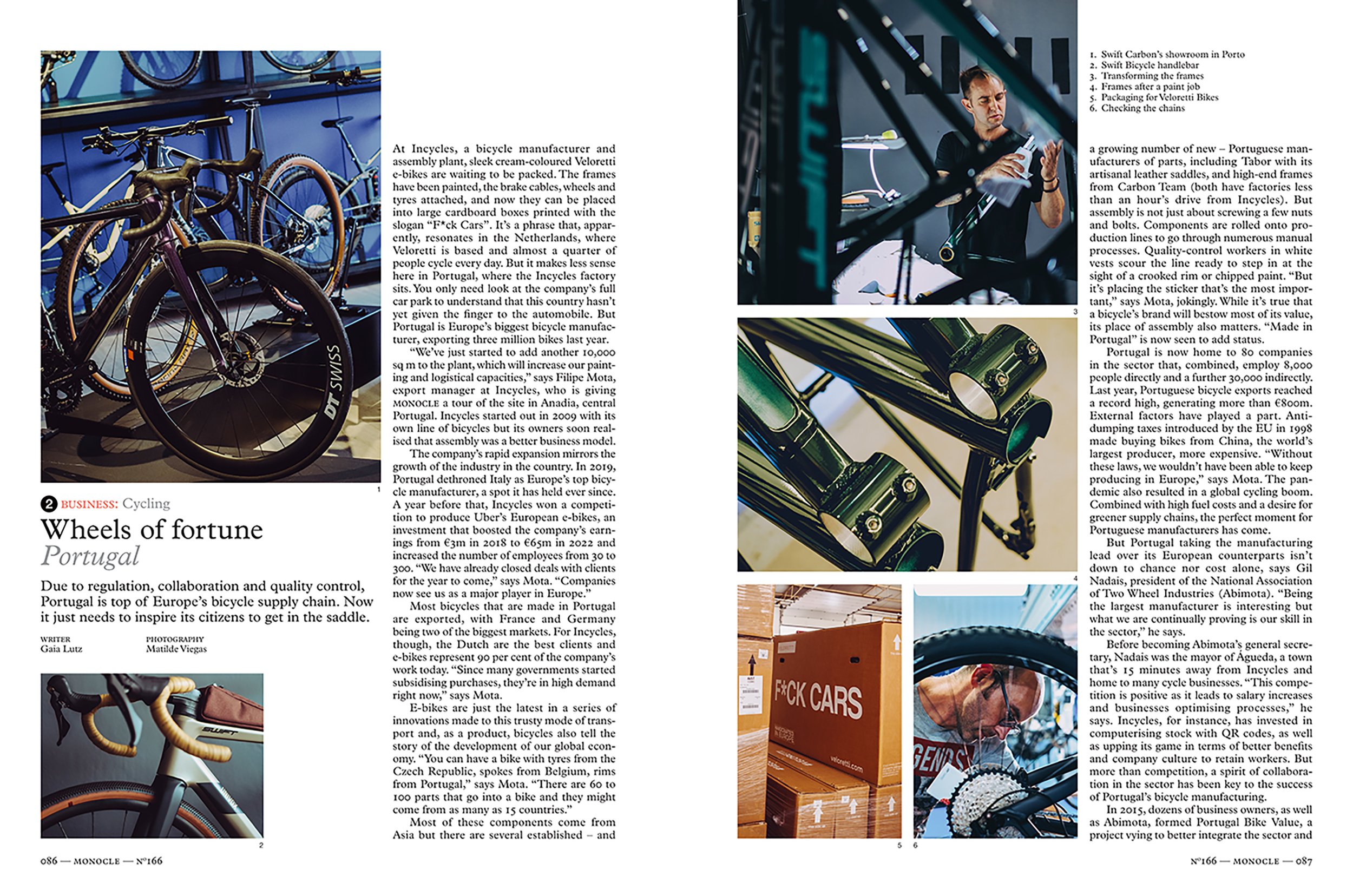

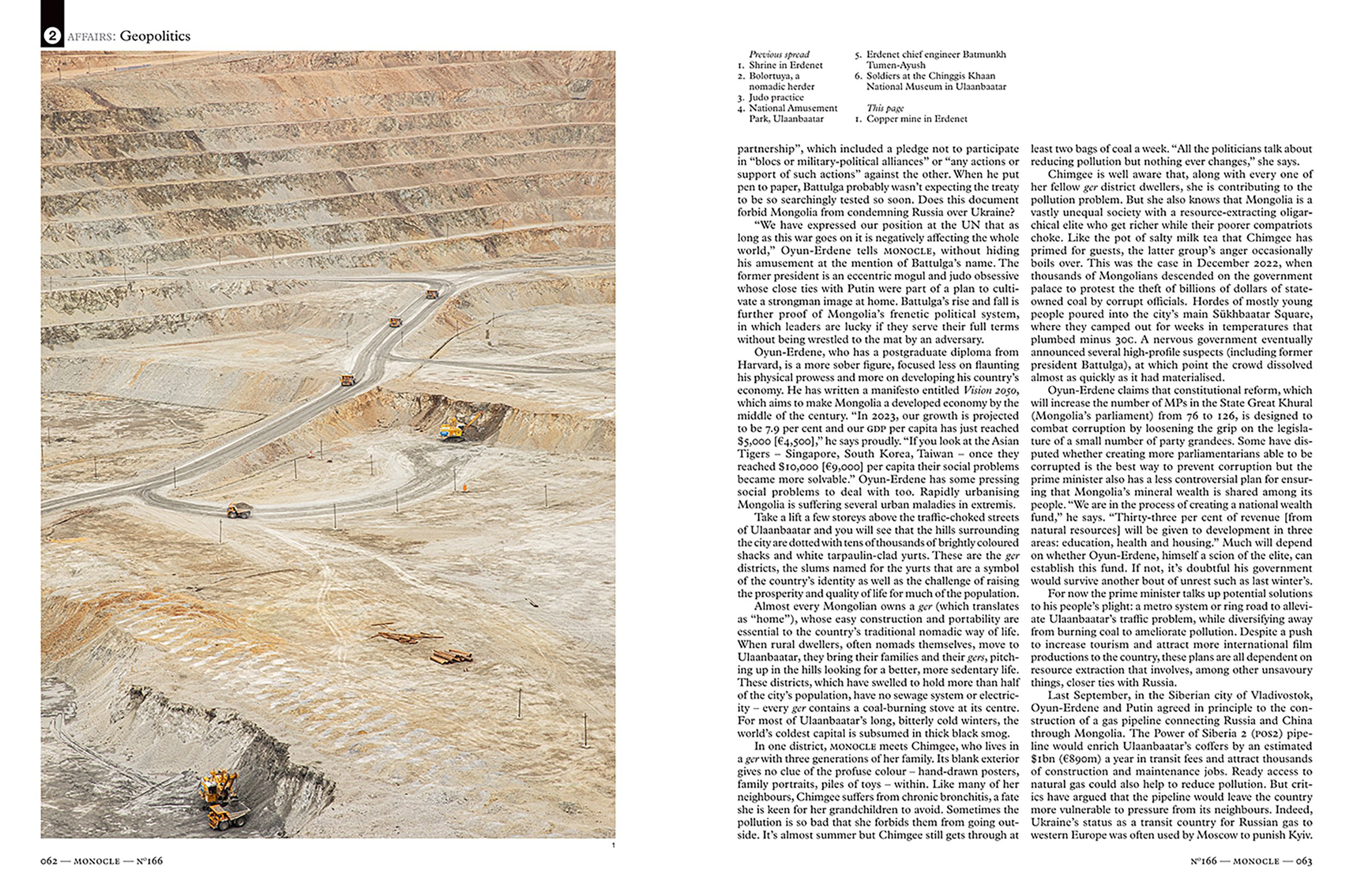
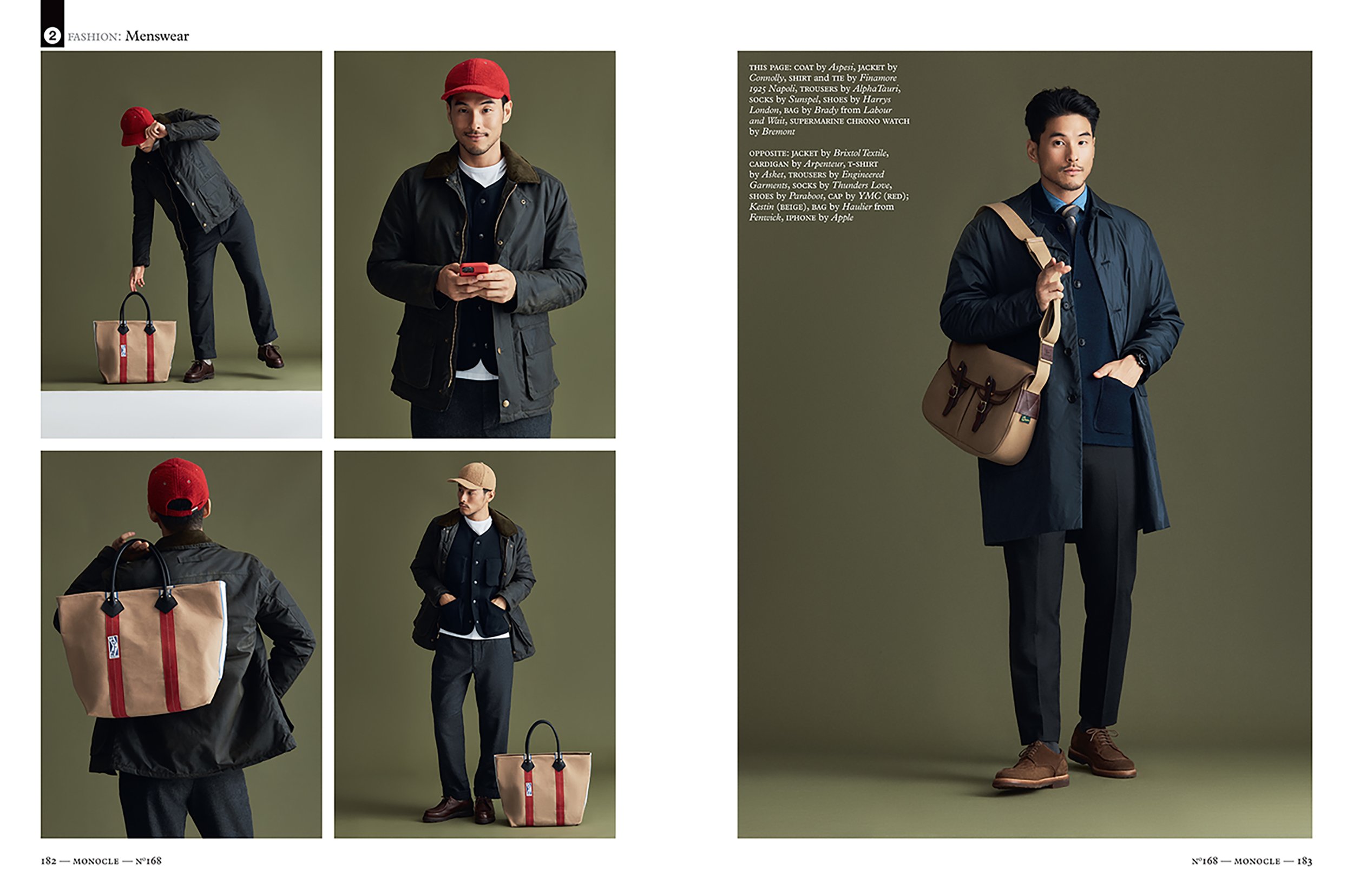
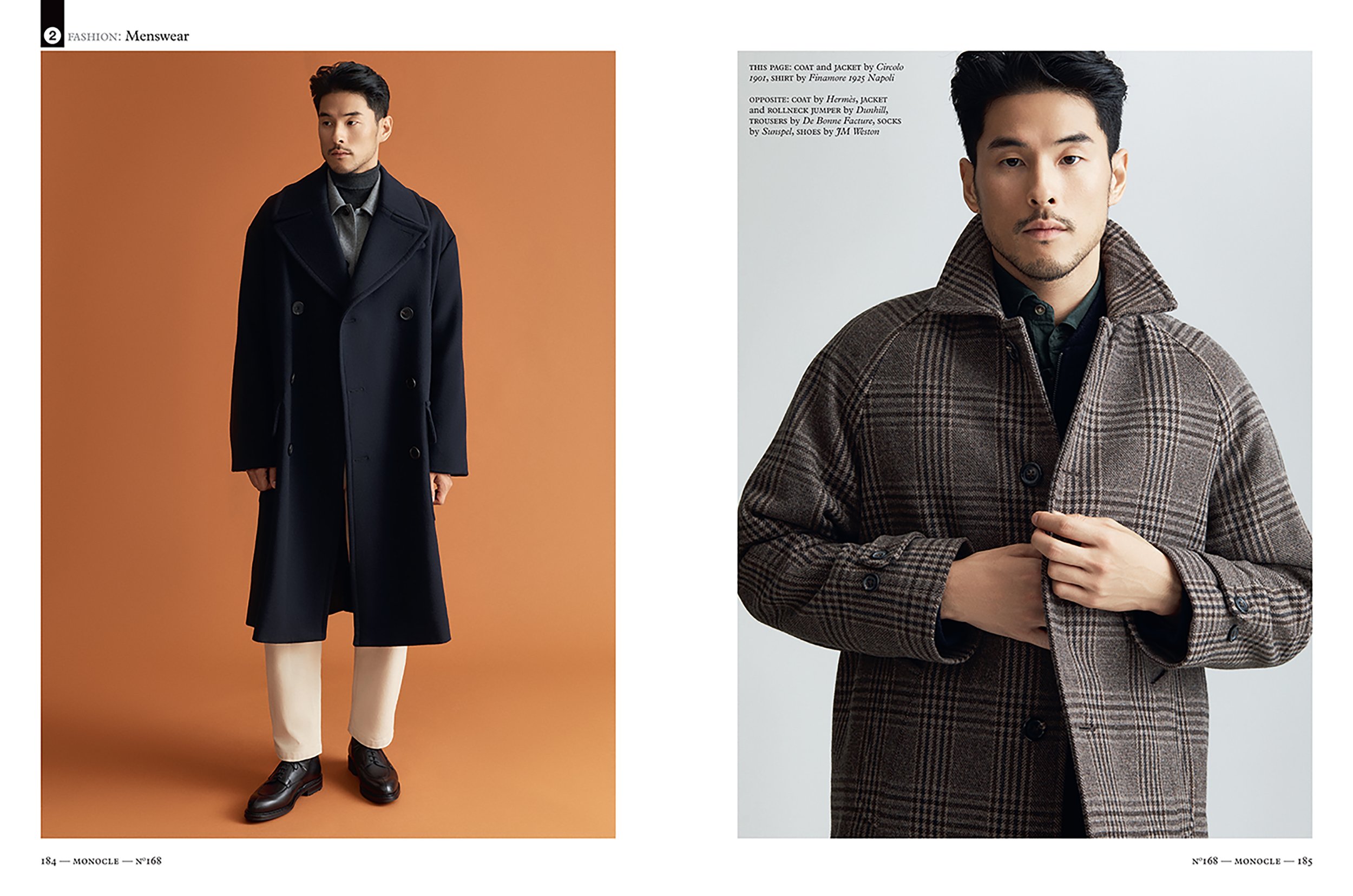
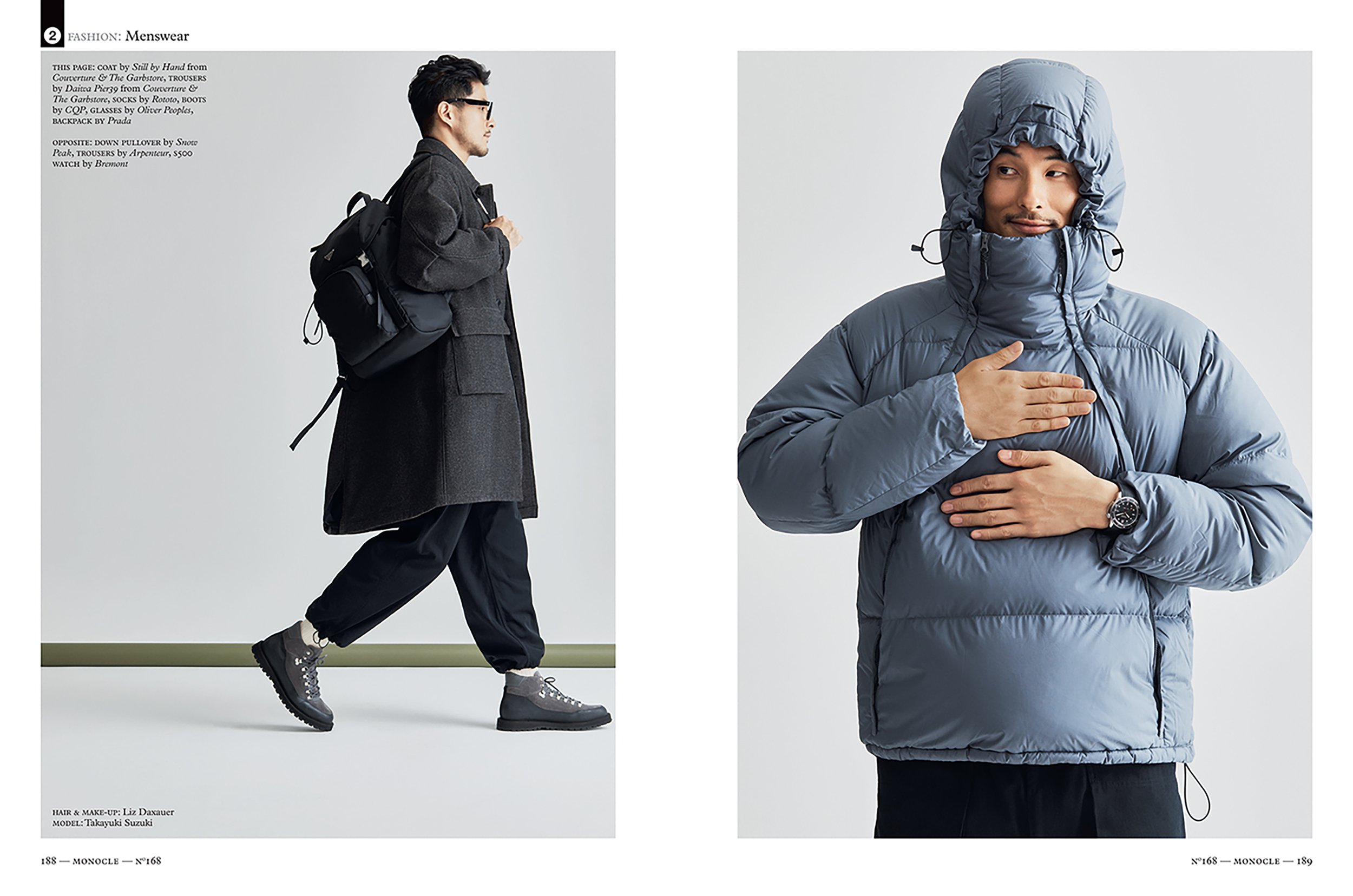
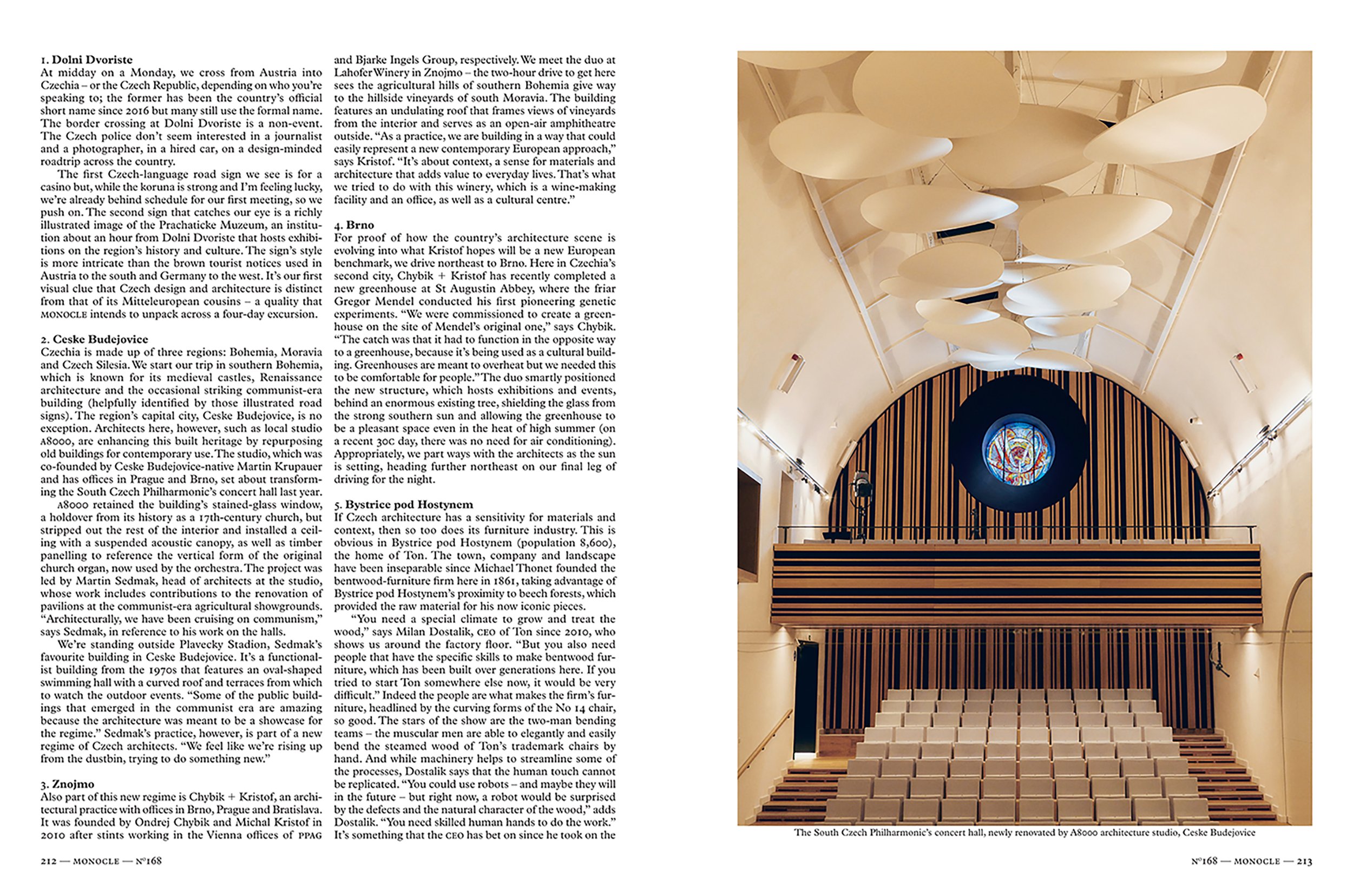
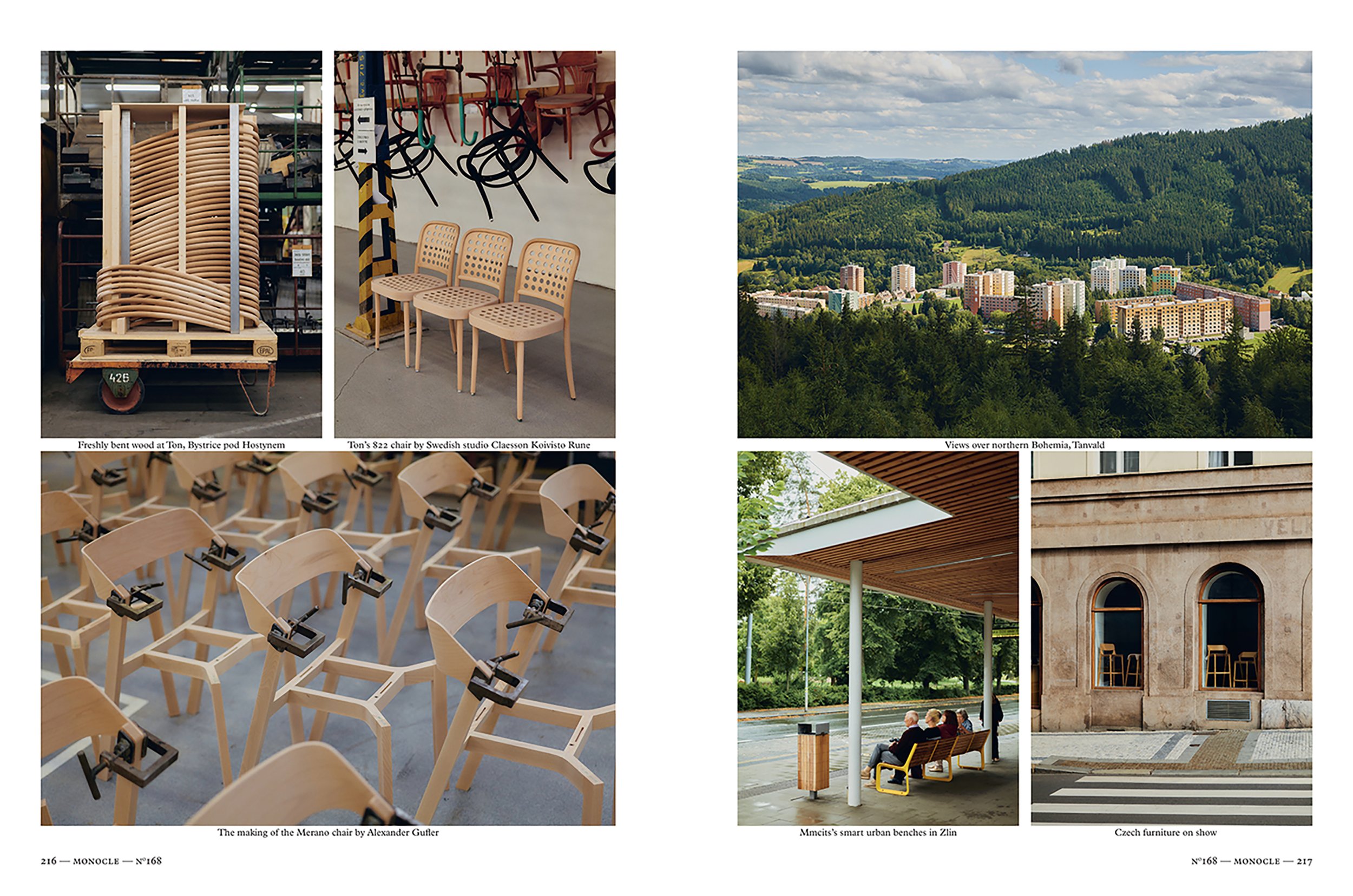
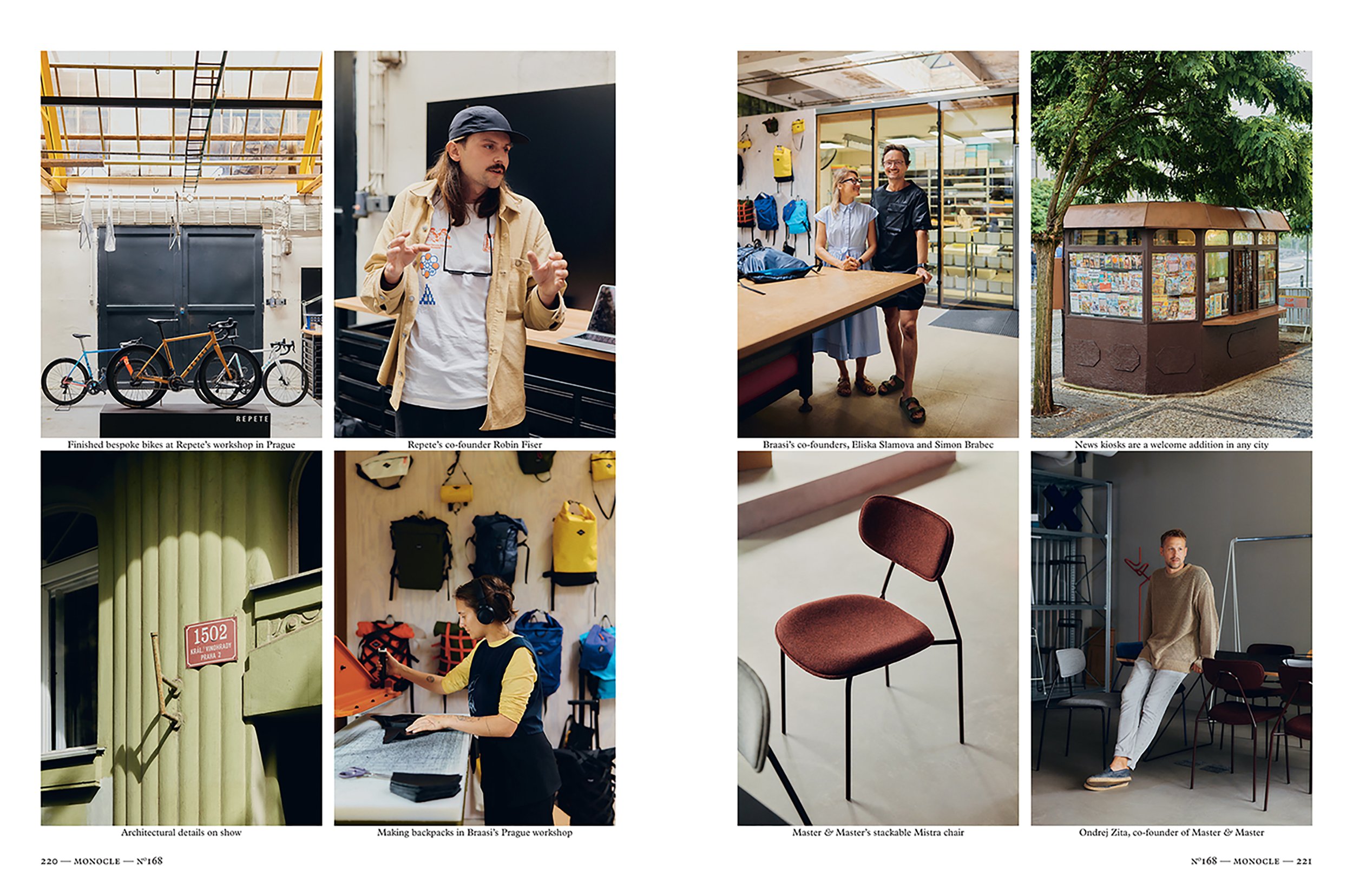
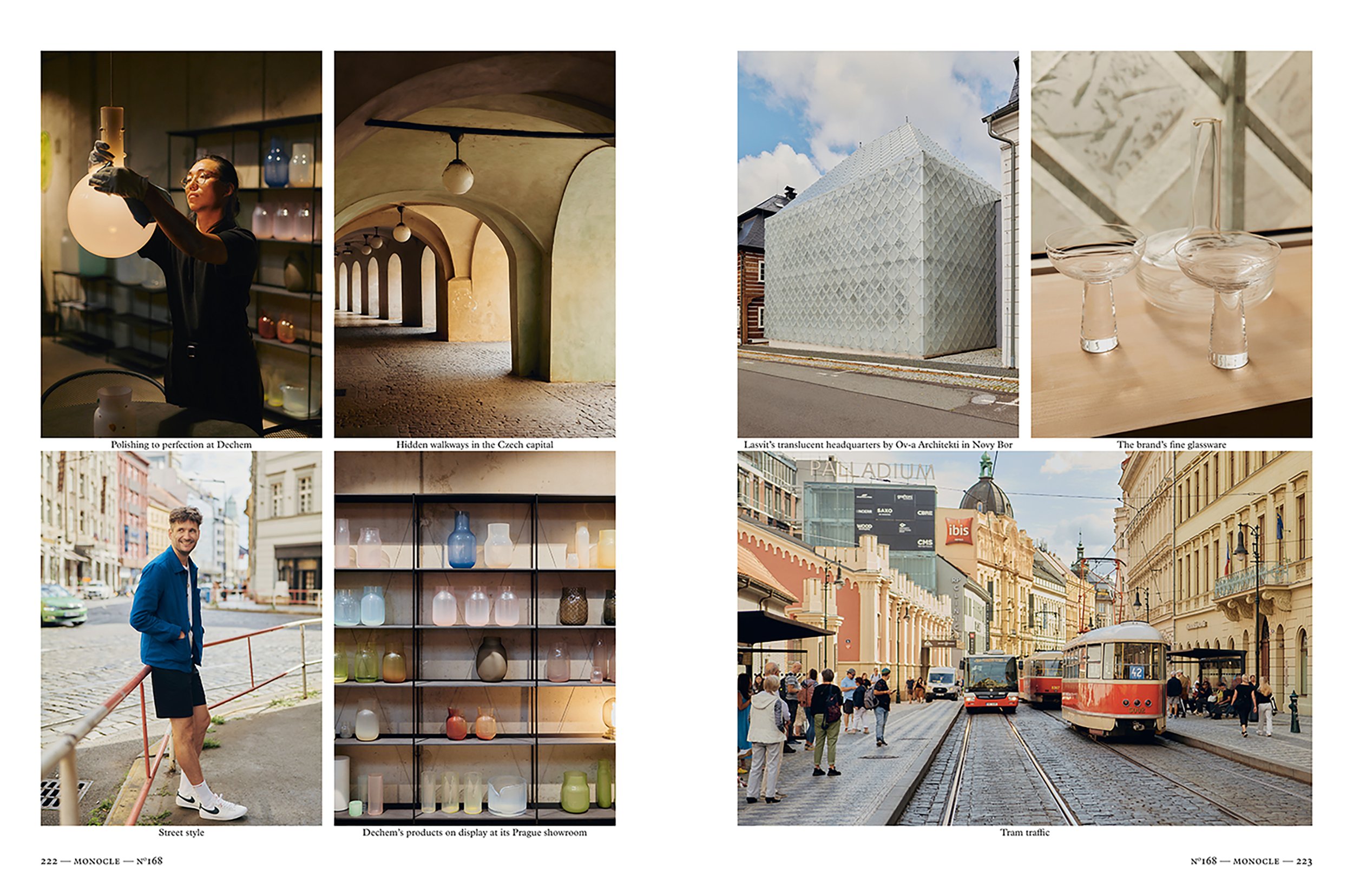

George Gendron: So it’s still the touchstone.
Tyler Brûlé: Absolutely. It’s what creates a discipline. It’s what keeps you—honest is not the right word—but it’s certainly what keeps you focused, keeps your eye on the mission. And I think it’s ultimately what you’re measured by. The newsletter part of our business is, of course, very important and becomes more influential, but I still think it’s the core magazine that comes out 10 times a year.
George Gendron: I want to bounce an idea off you and you may not agree with this, but here goes and I don’t mean to sound judgmental, but I’m just going to put this out there, which is one could argue that if you really deconstruct Monocle the magazine, there’s not necessarily anything quite remarkable about the individual elements—the typography, the photography, the illustrations, the content, the prose—each element seems professional, but not remarkable. And yet the magazine itself is remarkable. Patrick Mitchell said to me recently, he thinks of the magazine less as an exercise in traditional graphic design and more as an exercise in industrial design. Product design. Does that make any sense to you?
Tyler Brûlé: Up to a point it does. And I think part of it speaks to maybe our heritage as well, because we had a five-year pause between doing—and I say we, because of course, there’s a team that did travel with me from the world of Wallpaper* on to the world of Monocle—but there was a five year, sort of, rest or pause period. We were hardly paused, though.
And that was when we were really building up our branding and design agency. And we were working on other editorial products. But I used the word “product.” And many of these things— whether it was painting the fuselages of Airbus aircraft or it was working on retail projects, or it was indeed working on packaging—these were exercises in industrial design, graphic design, building and creating environments that happened to be on rails or had wings.
And so that was a really interesting period to go through, because I was all set, at the end of Wallpaper* to maybe just pause for nine months and then bring out a new magazine. But having five years in between, I think, allowed us to really think about brand, and development of brand, and the codes around brand, and what makes a good launch succeed or fail. So it was a very interesting learning period, which has definitely informed where we are today.
George Gendron: What’s interesting—I want to see if I can marry that question with something that occurred to me earlier, when you were talking, and that is your vocabulary is really interesting. You don’t talk about “podcasting”—you talk about “radio.” You don’t talk about “video”—you talk about “television.” Explain that to me. That’s clearly very intentional on your part.
Tyler Brûlé: Yeah, it’s either intentional or it’s lazy or it’s because I’m a child of the 1970s combination of all. Yeah, sure. It’s … I mean, listen … I think one thing that keeps you sharp— because I do try personally, and I think on our editorial floor we try not to fall into language traps that I think many people sort of swirl around in.
And I think we do have our—I come back to that notion of codes and a tone that we try to speak with. And it’s interesting when you go back to your earlier question about, where in the world, if you think about Monocle, where are we based? Are we London? Are we New York? Are we Berlin? et cetera. And I always try to say that we, we don’t want to be any of those places, but we want to borrow from the best of all of those.
And when we think about television or we think about radio versus podcasts, it’s because there’s an intention and there’s an honesty to it as well. We said from the very beginning, we were probably one of, again,”legacy” or we were one of the first, certainly, print brands to get out there with a podcast very early on.
But I would say within the second or third podcast, because we were making this program in a studio around the corner from Broadcasting House in London, I thought, “Imagine if we took this show on the road and did this 24 hours a day, seven days a week.” And so we were thinking about radio and we do talk about bureaus because that’s what they are. Because we do have people in cities with the support of their own office and the equipment they need to do their job.
And yes, is there a romanticism to it? Is that part of the nature of why the magazine’s called Monocle? A little bit. But you know, I guess I sort of see it as part of this is also—maybe it was a little bit of a correction as well. When we came out in 2007, many things were pointing south. And were pointing south and moving at speed.
I think back to 2007, what was happening in print then. We had the digital surge already happening in terms of digital photography. And look back at magazines in 2007, 2008, 2009, when there was that move away from film—reproduction houses, post-production, the printers—no one really knew how to deal with these digital files and, and just look at the skin quality magazines in that period, in a lot of magazines. It’s dreadful.
It looks like everyone somehow had a front row seat to some kind of nuclear apocalyptic sunset or something. And that’s why, in the very beginning, we—and we still take pride in shooting stories on film. Not to be Luddite about it. Not to be overly romantic, but there is a certain quality that comes as shooting on film still.
We don’t do every story on film, obviously, but I guess, part of the language and part of, I think when we think about how we want to position ourselves in the world and on the newsstand it’s, yeah, it’s to be correct, I would say.
Monocle’s special issues on the world, business, and travel
“We were probably one of the first “legacy” print brands to get out there with a podcast.”
George Gendron: I think there’s something really powerful about vocabulary that people miss. I mean, if I have to be part of another conversation where people start talking about “content.” Oh my God! How bland and generic can you possibly get when everything becomes content? And that’s why I find your vocabulary really interesting. Including “bureaux”, which is E-A-U-X, by the way. And there is a romanticism to it, but it has a really powerful effect.
Tyler Brûlé: Yeah, and I would say that doesn’t come from a whiteboard brainstorming session with a consultancy. It’s what we all believe. And I think that speaks to the people that have, that we’ve all stuck together for a long time. Not because we don’t have any other places to go, but there’s a commitment to the mission and what we want to, of course, deliver on page, the copy that we want to commission and edit, and hopefully turn into great editorial, as much as the types of evenings that we want to host for readers who are in Bangkok, or in Hong Kong, or in Asheville, North Carolina.
George Gendron: You talk about something that really interests me at a time when we have become, at least here in North America, absolutely obsessed with scale and scaling for its own sake. And that is, kind of, what seems to me almost like a filter you must use strategically to determine what you’re going to do to intensify the relationship, the intimacy between you and—I’ll call it a reader, but it’s a customer, right? Because they’re readers, their purchasers are your goods, they’re frequent attendees at your events, they drink coffee at your cafes. And it seems to me this notion of trying to do things to create and sustain an intimate relationship is so completely at odds with our obsession with scaling these days.
Tyler Brûlé: Yes, indeed. And it’s a conversation that we’ve had—I would say a lot—over the last three years. We’ve had many approaches from, of course, other media groups and private equity and many types of organizations with financial muscle in between those two who have just come in right away and said, “There’s so many things you can do to scale this business, and we can supercharge your circulation and your cafes and all the aspects of your business. And we can really give you ‘reach,’”… and all of the jargon that goes with this.
And as you’ve noticed, we’ve been very cautious, of course. And we can talk about, “Yes, we’d love to grow.” And it would be wonderful to be in a place where I didn’t have to sit beside someone on a plane who’s never heard of us before.
But of course, every day that also still means there’s a lot of opportunity in the world. But scaling at speed or just even scaling at a considered pace comes with dangers. And it’s not just about scaling in terms of audience and what does that mean in terms of what it’s going to do for revenues.
But I think also there’s the scaling that you might attempt with technology and there’s a scaling that might come with also to broaden your editorial reach, et cetera. And also the dangers there as well. And we’re not cautious, I think. We don’t set out to be pioneers, but also we’re a family company, and we can choose to do things quickly if we want to.
There’s many other things we can’t do because our pockets aren’t that deep. But I would still rather be in a position where I know the depth and scale and how far we can go rather than trying to bet the farm, because there’ve been so many instances over the last decade where we’ve seen people run headlong after the latest trend, whatever it may be. And we see the media world littered—the roadside is littered—with all kinds of carcasses of people who wanted to scale and they’re no longer with us.
How it started, how it’s going
George Gendron: Yeah, that’s absolutely true. And in fact, one of the things that interests me about talking to younger people, and I’m not going to break it down into Gen X, Gen Y, but is that there seems to be a sentiment among younger people that I find so encouraging that scale at any cost is the enemy of creativity. Period. End of story. And you could argue Monocle’s really interesting case study in that regard.
Tyler Brûlé: Yeah. And I don’t think we set out to be that brand or those people with their arms crossed over in the corner who don’t want to move. And...
George Gendron: Oh, no. I didn’t mean to suggest that.
Tyler Brûlé: No, but I’m just saying some people might think—and who knows, maybe there’s even a component of that. I don’t think so. But it is fascinating that there is that sentiment amongst younger consumers as well, who do want an intimacy, a conversation, who want to see the brand as “theirs.”
But at the same time, we know that of course we can be bigger in the US and we can do a much better job in many other markets around the world. But I also say the great thing is that we’re still here doing what we do and doing it on our own terms.
George Gendron: I want to take this opportunity to transition a little bit back to the young Tyler Brulé. It’s been reported that when you were young, you were mesmerized by a man by the name of Peter Charles Archibald Ewert Jennings. Now we know him as Peter Jennings, the anchorman. What was it about him that attracted you in the first place?
Tyler Brûlé: Well, when I was making the comment a bit earlier about being a child of the 1970s, I grew up in many cities across Canada, and there was a certain magnetism that the nightly newscast had for me growing up. And in Canada, unlike the United States—which is, I always think, is one of the defining differences—our national newscasts of record were never at dinnertime.
We didn’t sit down with our equivalents—Knowlton Nash, Lloyd Robertson—those were our Tom Brokaws, they were our Dan Rathers of the day. They were on at 10 or 11 o’clock at night. And I always found it kind of fascinating that the last word of the day, in terms of both domestic and international news, ran from 11 o’clock to 11:22 EST.
And so there was just something about that, sort of, bookmark at the end of the day, the look ahead into the next day. At the same time, of course, in the 1970s as cable came along, et cetera, and we were able to watch US channels, I was always fascinated, probably over the course of the seventies into the eighties to see how many of the names that I knew in Canada suddenly ended up at NBC, and CBS, and ABC, and of course, later on when CNN launched as well.
And I always wanted to, not always, but I would say certainly when I started my secondary school years, I knew that I wanted to go into journalism. I loved magazines and newspapers, but I saw myself in broadcast journalism. And then when I saw Peter Jennings jump across the border and become the foreign correspondent, and then really the face of ABC News, I thought, “This is the dream job.”
And especially in those golden years when you had ABC World News Tonight when it was anchored out of Washington and Chicago and London, that just seemed so modern. And it’s funny to think, Look where it’s all ended up today.
And I guess that goes back to the bureaus, and that sort of excitement. And it truly was. It did feel exotic. And you felt connected to something bigger. I mean, imagine now just to think that you’d be watching one of the big three networks, that that part of the newscast would come from the other side of the Atlantic. Kind of remarkable.
And that was the start of it. And that’s what I wanted to do. But here I am today not doing that.
George Gendron: And yet you could argue that portions of your career kind of did mirror Peter Jennings. You were a foreign correspondent. You were wounded in Afghanistan. And so again, there’s this kind of romanticism, I think, about your life and about some of the things and the people that inspired you that’s really quite extraordinary. But let me go back. Jennings started his career in radio, evidently, at the age of nine. What were you doing when you were nine years old?
Tyler Brûlé: Oh, when I was nine years old, I was—was I writing letters to the Ministry of Defense in Canada? Close to it. I think I was on the radio. I didn’t have a career, but I remember being on CBC Radio very early on with, I think, with the complaint because I felt that Canada’s defenses relied too much, or let’s say our poor defenses, meant that we relied too much on the United States. I think it’s still the case today.
And I did write a letter at one point to the minister and I told him that his selection of fighter aircraft was slightly misguided. Somehow it made it throughout the PR team at the ministry. But anyway, it made it to CBC Radio. And I can remember doing my first national radio piece—I must be nine or 10 or something like that—but I was quite young.
And it’s interesting when we talk about bringing up Peter Jennings today because, I have to say, I have Peter Jennings to also thank personally because I remember going to see a broadcast of World News Tonight in New York. And this would’ve been in the late eighties, I guess. And I ended up speaking to Peter afterwards, and he gave me a lift back to my hotel. And I was thinking at that time, God, to be in Peter Jennings’s limo and having a chat with him! And I said, “If you had one piece of advice for an aspiring young Canadian journalist, what would it be?”
And he said, “Get out in the world. Don’t go and work for a farm station in Canada.” He said, “You just have to get out there. Leave this continent. Go out, explore, take some risks, take some chances.”
And he didn’t say, “Don’t bother going to university.” But I think he almost said that in code, because he said, “As a journalist, you’re going to learn your skills and your skills are only going to be great based on what you’ve experienced and who you know.” And those are the words he left me with. And it was remarkable to have met him. And also of course have those words of guidance as well.
George Gendron: And obviously they had an impact on you, because that’s exactly what you did.
Tyler Brûlé: Yeah pretty much. Yeah. I certainly admired the man.
George Gendron: Who do you admire today?
Tyler Brûlé: Goodness. In the world of broadcast? Or just anywhere?
Monocle’s commitment to innovating in print led to the launch of seasonal newspapers.
“The roadside is littered with all kinds of carcasses of [brands] who wanted to scale and are no longer with us.”
Shortly after launch, Monocle began making coffee table books.
George Gendron: Yeah. It’s interesting to hear people talk about an individual who kind of mesmerized them. And I’m curious, are you mesmerized by anyone today that comes to mind? Journalists or not.
Tyler Brûlé: Sure. And just, like, on the fly at this very moment, I don’t think I’m mesmerized in the world of media by anyone in particular. But certainly I’m impressed, and have met many people that I look up to and like spending time with, particularly in the space of journalism.
And this is not to say that I’m blasé about it, it’s just because I think as we’re speaking, this has been one of these travel periods the last five weeks where I think I’ve been home for about four days. So maybe I could be a little bit sharper if we did this three days from now.
George Gendron: That’s okay. Well that raises an interesting question, which is—well first I want to ask you a big, broad question and then I want to pick up on your travel and on you as a magazine maker—and that is, which do you identify with more: founder/entrepreneur on the one hand, or magazine-maker/editor on the other?
Tyler Brûlé: I would even go—it’s not somewhere in between, and it’s not a step down—I would just say “journalist.” I still write for the newspapers. I, of course, write for my own title and I host programs. But it’s still driven by the foundations of being a journalist.
I always think the best measure is when you go into a country where you still have to jot down on a little yellow piece of paper “profession,” I write “journalist.” It just seems odd to write “chairman” or “editorial director” or “CEO.” It just doesn’t …
George Gendron: Yeah, I know what you mean. Of course.
Tyler Brûlé: But yeah, those are mainly functions, and I have those titles on various cards. But if I think about What do I do? I’m a journalist. I’m out to be a witness. I’m out to absorb, I’m out to interpret, and I’m out to communicate.
George Gendron: What I always love about journalism is it subsidizes one’s curiosity.
Tyler Brûlé: Absolutely. Especially when you have editors and publishers who are as curious as you and believe in the craft of journalism. And I have to say, I’ve been very fortunate over the decades to have worked with amazing publishing companies and outstanding editors. And it’s been great to be, hopefully, to be in a position as well where we’ve done the same for other people moving into or cutting across their career as well.
George Gendron: You say you travel 250 days a year. That has to have an impact on how much time you actually get to spend on an issue of Monocle. So is that true, number one? And if it is true, what are the things that you miss most about having more time to spend on Monocle?
Tyler Brûlé: So, first going back to the numbers game, obviously for this last period, it’s not been 250 days on the road. I do feel like I’m moving back to that. But yeah, you know, it’s interesting, if I think back before the start of the pandemic, I had shifted a little bit of my focus and my life to Zurich more than London.
I handed over the daily reins of the magazine to Andrew [Tuck]. Andrew became the editor-in-chief of the magazine, I took the title of editorial director. And that happened very naturally because, I think, on one side, we were just doing other things. There were so many other components.
And even though Andrew, of course, is across all of the content, things were becoming more complex in terms of the types of partnerships. I was playing a bit more of, I would say, the CEO role as well, looking after the brand in all of its aspects.
But who knows? We can revisit where I end up at the end of 2023, how much I’ve been traveling. But yes, I’m on the road a lot. And I don’t think it’s annoying for the rest of the team, but there’s one thing about going out there and knowing where we have either correspondents or we have bureaus, and arriving in a city and thinking and then I have to fire a note back to London saying, “Are we working on this story right now?” “Oh, no. No, we’re not working on it.” Or we might have passed on it—normally not passed on, they’re just not working on it. And I say, “How did we miss this? Why isn’t this commissioned already?”
And Andrew and I always have this conversation, in a really polite and forwarding way, about having done what we’ve done for a very long time that oftentimes other people just simply miss it. Of course we know the flip side of it all as well is if you’re in a market the whole time and your beat happens to be that Latin American city or that city in Southeast Asia, you just, you may not see it. But if you’re in Tokyo one day, then you’re in Taipei, then you’re in Singapore, then you’re in Bangkok and you’re like, “Oh, I was able to connect all of these things and isn’t it curious why this one thing is happening in Thailand at the moment.”
So I would say it actually helps inform what we’re doing. It allows Andrew and everyone back at base to get on with what they’re doing. And it allows me, probably, to be quite pointy and sharp and making sure that we’ve got the right stories going into the magazine and in a fashion which is, still, quite top-down you would say.
And of course that doesn’t inform everything we do. So I think it’s important. I think it’s a nice sparring match that I have between Andrew and the other editors. I’m sure it annoys them some days. Some days not. But I think it makes for a better product.
What do I miss? I miss the close of the magazine, because I’m normally not on the editorial floor in London. I have a set of walls here in Zurich, cork walls, where the issue does go up. But I’m able to look at the flat plan and look at the pace of the pages, et cetera.
But it’s not the same as the bar trolley being open on a Friday when you’re—or Tuesday is the hard close, I should say—Tuesday when you can flip through the book and you can open up a glass of wine, be with a team and celebrate that this has now been shipped off to Germany and it’s hitting the presses. That I miss.
George Gendron: That’s the best, isn’t it?
Tyler Brûlé: And that’s the power of the newsroom. And I think it’s the power of being together, and it’s the power of why we do what we do. And I think we were quite lucky—there were one or two issues that we weren’t all together properly, en masse, to get magazines out in that early spring of 2000 period. But, yeah, the good thing is we corrected that quite quickly. But that’s the magic of why we do what we do. And I think that’s the beauty of the editorial floor.
A natural spinoff has been a bespoke series of travel guides.
George Gendron: What, if anything, are you absolutely completely unwilling to delegate when it comes to the print edition of Monocle?
Tyler Brûlé: Well, I delegate many things, but I would never be in a situation where the cover goes without seeing it, without being able to look at the coverlines, without being able to contribute to the coverlines.
And, I don’t read every word anymore, but we’re in a situation where, if there’s something that Andrew thinks is critical that I need to see, I see it. But I have to see the entire issue. And when you see it pinned up on a wall, you’re not reading every word of the issue, of course.
But I can’t give that up. That is very important. And listen, it’s important to Andrew and Richard [Spencer Powell, Monocle’s creative director], and Josh [Fehnert, executive editor] and Sophie [Grove, editor of Konfekt] and all of the other people who are in the senior editorial mix that there’s also just a different set of eyes.
I mean, it’d be much worse if I didn’t make comments. But also if I didn’t see it, but then ranted about something because well, that’s down to me. Then why didn’t I see it? And, of course, we don’t catch everything and we have glitches and mistakes, like all media brands do. But that’s something, to me, which is essential and also makes me a journalist.
George Gendron: Listening to you talk, there is something—a kind of an authority and an aura—that comes with being a founder that you have to be aware of. People want your opinions. They want your input. They want your presence. Like it or not.
Tyler Brûlé: Yes. And that is, maybe, a little bit of the culture that also comes with being an independent publisher still, as well. We’re not part of a major conglomerate. And every success is our own. And every mistake is our own.
And there is also that sense of being an owner/founder that it is a high wire act every day. And there are no cables and nets. And no spotters on the ground, either. So it means that you really have to proceed with caution. But I think when you have the chance to do it, that you can also move forward at pace as well and with confidence.
In 2020, Brûlé and team launched Konfekt, “a deep dive into the worlds of fashion, craft, travel and design.”
“We’re not part of a major conglomerate. And every success is our own. And every mistake is our own.”
George Gendron: I want to talk about two things—one could be an entire podcast in its own right—and that is Monocle has a really interesting and I think, really healthy effect on a reader in the US which is that it’s interesting to pick up a publication or engage with a brand that is so non-US-centric.
Tyler Brûlé: So yeah. Discuss. Yes, discuss this topic. It is. And listen, it’s why the US is our biggest market, as well. Not just because it’s the biggest English-language market in the world. I think we could maybe sell more copies in the UK alone. And the UK is very close, but the US is our biggest market. Newsstand subscriptions. Radio listeners. People buying products from us.
And I think part of it is because it’s an oasis of a different dialogue. It’s a different conversation, it’s a different lens. Of course we do cover the US. But again, we’ve always done so on our own terms. And it’s been really interesting to read and engage with some of the correspondence over the past few years as things have become more divisive in the United States.
Andrew and I say we’ve always done a good issue if we’re able to annoy both Democrats and Republicans with one issue. And one thing we do talk about—and maybe it was when you were just reading out some of the values and the mission statement that we had cooked up back in 2007—I don’t think we were talking about being a voice of reason then, but I think we, again, it’s not written, it’s not in any brand book, but we want to be pragmatic, and we want to be measured, and we want to be a place of common sense, as well. And I think, obviously, that is something which we're constantly pointing out. That we need to have a real commonsensical approach to things.
And it’s funny how that’s what—even without us talking about it—that’s what we get from our listeners and our readers as well. People say, “Oh, I just thank goodness you just speak some basic truth,” which might be right of center, it might be left of center, but we’re not setting out to have any political agenda around it. We just want to be pragmatic.
George Gendron: When I think about Monocle, print in particular, but I think it’s true of the brand in general. In fact, it is true of the brand in general. It’s certainly true of radio. I think that you guys really revel in creativity, innovation, invention, resourcefulness, imagination. You really revel in it. I don’t know what other word to use. And that leads to an interesting question which—this is going to sound like a non sequitur, but it’s not—is New York City over?
Tyler Brûlé: I don’t think it’s ever been our position. And this comes back to, and I don’t want to revel in a house view, but Monocle’s a place about the positive. We come from, I would say, a position of looking forward. That doesn’t mean that you ignore atrocities, bad behavior, missteps of the past, but there is also a component of what we do, which is let’s be solution driven.
So has New York stumbled? Is New York the place it was five years ago, 10 years ago, over 20 years ago, when it was the editorial hub of the world? No, I don’t think it is that place anymore. But it doesn’t mean it’s out. Because listen, I mean, still some of the world’s most important broadcasts and newspapers are coming out of that city.
But are they the broadcast or journalistic benchmarks that they once were? No. I think you look at a number of titles or outlets or bulletins which don’t have the same level of clout. Now, of course, the media landscape is much broader and of course it’s much more dispersed. So people have more options. But I would also say at the same time, some of those flagship brands are not quite what they were either. So some of it is on their own watch. It’s not just because of what’s happened with competition, attention deficit, and everything else.
George Gendron: I’m also thinking though, and I don’t mean to turn it into an anti-New York City screed. I grew up there. I love the city, but a lot of creatives have left, and they’ve left simply because it’s not affordable. And that’s an issue, certainly in the US, for cities like Boston, New York, San Francisco, to a lesser extent, LA. I guess I’m also asking this question about, kind of, affordability and creatives.
Tyler Brûlé: And that you need to have an affordable environment to be able to cut your teeth as an art director, as a photo editor? Yeah, in part. But London was never cheap. And I think back to the magazines, the titles which were really so important to me growing up. Hamburg was never a cheap city. And it continues to be one of the most expensive cities in the EU.
But I think back to the glory days—and the Hamburg period is probably the same—late eighties, nineties maybe even up into the early two thousands, it was never inexpensive. So I don’t fully buy that a city needs to be completely affordable. I think, as a young journalist, you need to be in the best environment and you need to be learning from the best.
And yeah, you might be able to do part of it. But I go back to Peter Jennings’s comments, like, don’t think you have to be part of the farm team to make your way back to Toronto, to make your way to New York. Just get out in the world. And in that case, I left Canada, went to the other side of the Atlantic, and still am largely over here.
Monocle has opened branded cafés and shops around the world, including Hong Kong, Tokyo, Toronto, Merano (Italy), as well as London and Zurich, pictured here.
George Gendron: So if a young, recent college grad, who is interested in a creative field, not just journalism, but it could be design, anything that we would think of as a creative endeavor and they said to you, if you were me, where would you go right now?
Tyler Brûlé: First I would say, don't, as a 24 year old, say to yourself—or certainly say to a potential employer—that you “only want to work from home” or you “only want flexi-working.” This I don’t understand because you have to be around people. And if you really want to be a journalist and—listen, if you want to go out and chance it as a writer, great. Go for it. Go out in the world.
But if you actually want to be part of the editorial process—whether that’s making a radio documentary, or turning out a great magazine weekly, or a newspaper supplement on the weekends, whatever it is—you have to be surrounded by people, be in a great environment. The serendipity that comes with it, the camaraderie that comes with it.
But if you’re talking about someone who’s 23, 24, the learning, the mentorship—that’s the first thing. And then I would say why go for second best? If you were in a town or a city which has a newspaper or monthly magazine, which is on its last legs, probably not the place that you want to start.
So, yeah, you might have to make a few lifestyle curbs if you go to New York, or you move to London, or you find yourself in Singapore, wherever those titles happen to be. I think you want to learn from the best.
George Gendron: That’s great advice. To wrap this up, I have to come back to something that, having led the Inc. magazine creative team for 20 years, just fascinates me about this conversation, and that is your reference to Monocle as a family business. Can you say more about that? You don’t have a family. It’s not as if you’ve got five kids and you’re thinking about, “Which of my five”—you know, an episode of Succession—“which of my kids is going to take over?” Tell me what you mean when you say Monocle is really a family business.
Tyler Brûlé: I would say we’re a family business in almost the traditional—not quite mom and pop sense—but that it’s family money. But I should also be very clear that I’m not from a wealthy background. There are no silver spoons. A lot of this was self-financed. But nevertheless, of course, there was help from my mom along the way. And my mom holds a board position in the very small Canadian part of the business. And when we talk about blood that is one part of it.
But it’s a family in the sense that a lot of us have been together for a long time. And I think about Jackie Deacon [Monocle’s production director] or Richard Spencer Powell—Jackie is the master of understanding printing presses and paper tonnage. And talk about a skill and an understanding of something which is just … it’s golden what she does. We go back to the mid-nineties as colleagues. Same with Richard Spencer Powell, our creative director. So, listen, there’s many contemporary ways of defining a family, but I would say that this is one of the more older-school ways to define it.
And then I say it’s a family business because it’s also the other people who are invested. I mean, we hold, we, me, hold 70% of the company. The other 30% are families. So there’s no private equity. Two percent of our shares are held by Nikkei. But again, Nikkei is a private company as well. But everyone else—they’re family offices from Texas, from Thailand, from elsewhere in Switzerland, from Sweden.
So these are also other individuals who love media, they're passionate about what we do. And a lot of it has to do with quality. So when I talk in terms of a family, that is what it is. And there are no kids that are going to take over the business—at least none that I’ve spawned. But who knows? But who knows what happens with some of the other family members who are in the business. And what do we do with this moving forward?
George Gendron: Do members of your team, like Richard, do they have equity?
Tyler Brûlé: No. As we’ve built and brought in other investors we’ve done the best we can to cut people in, in terms of bonuses and done the best to do right by them. But no, it’s held by the other families and our shareholders.
George Gendron: I hate to end on a negative note, but I have to ask: What happens, in terms of succession, if you get hit by a tram today?
Tyler Brûlé: And it’s very easy to get hit by a tram in Zurich. I always say they’re the silent killers. Listen, there’s a very talented team in place. It’s a little bit like the same question, people say, “Oh, you know, what was going to happen to Wallpaper* when you left?” Well, Wallpaper*’s still around and seemingly doing okay.
I think that’s the essence of a great brand, right? Magazines have written codes, and fonts, and grids, and a photographic style that needs to be maintained. And, of course, it has a team of people that knows how to uphold all of those things. It has editors who understand the types of stories that are going to be commissioned.
So I think we’ve put a very good framework in place. We did that in the last magazine we did. We’ve done that for lots of other clients—titles that you may not even know that we’ve worked on. And we continue to do it day in and day out with Monocle. So I think the title would do just fine.
Midori House, Monocle’s headquarters, is located in London’s chic Marylebone neighborhood, between Hyde Park and Regent’s Park.
For more information, visit Monocle.com, where, if you’re a subscriber, you can read articles, watch films, listen to radio, and buy all kinds of cool stuff.
MORE LIKE THIS…
Back to the Interviews
A Style All Her Own
A conversation with editor and designer Stella Bugbee (New York Times Style Section, The Cut, Domino, more).
A conversation with editor and designer Stella Bugbee (New York Times Style Section, The Cut, Domino, more).
—
THIS EPISODE IS A SPECIAL COLLABORATION WITH OUR FRIENDS AT THE SPREAD
EDITOR’S NOTE:
This summer, our first collaboration with The Spread—the Episode 21 interview with former Cosmopolitan Editor-in-Chief Joanna Coles—became our most-listened-to episode ever. Now Rachel Baker and Maggie Bullock are back, and this time they’re speaking with another game-changing woman in media: Stella Bugbee, the editor of The New York Times Style section.
For our new listeners, Rachel and Maggie are a pair of former Elle magazine editors and “work wives.” In 2021, like many of you, they found themselves wishing for a great women’s magazine—and watching the old-school women’s mags drop like icebergs from a glacier. They decided to be the change they wanted to see—and The Spread was born.
Now, more than two years into publishing their dream weekly on Substack, rounding up juicy gossip, big ideas, and deeply personal examinations of women’s lives—from The New York Times and The Atlantic to Vogue and Elle to NplusOne and The Drift—The Spread is a cult favorite of media mavens and the media-curious.
Rachel & Maggie call Bugbee “a magazine-making unicorn”—we’re excited to be able to share their conversation with you.
—
Maggie Bullock: Last month, the big, bad headline in the world of women’s media was the shuttering of the groundbreaking feminist website Jezebel. We’ve since learned that Jezebel could be revived, but who even knows what that means? Regardless, the “closure” unleashed a wave of mourning, even among magazine fanatics like us who’ve become a little bit inured to the decimation of the legacy magazines that Jezebel was invented to skewer. Rachel, Jezebel was supposed to be the radical “antidote to the establishment”—and it didn’t have to contend with the print and circulation costs that sink bigger ships. When that topples, you have to ask yourself: What era of women’s media are we in now?
Rachel Baker: That’s what makes it such an interesting time to talk to Stella Bugbee. Ask any 30- or 40-something today about the one women’s media brand that is absolutely a daily must-read, and she will say New York magazine’s The Cut—the site that, starting in 2012, Stella built. The Cut was not just a women’s magazine re-sized for the internet, but a whole-cloth reinvention of the form. Jezebel (which was founded in 2007) was as much its forebear as the Elles and Vogues of the world: The Cut had the irreverence and voice-yness and political savvy of new media and the high-caliber production value of old media. And it was built to last: While we may have lost Jezebel, The Cut is still operating, more or less, on the blueprint that Stella created—and going strong.
Maggie Bullock: What we’ve always found fascinating about Bugbee is that she started out as a designer—she worked at a creative agency and on the visual side of a ton of cool indie magazines (like Interview and Topic) and had a stint at The New York Times before becoming the design director of the original Domino. But then when that magazine folded, she somehow totally switched teams, becoming an editor and a really great writer. I can’t think of anybody else who did that, can you? It's no surprise that The New York Times tried for years to get Stella to come to run the Styles desk. Somehow, the middle of the pandemic—when most of the Times was still working remotely, when she was unable to meet her team in person—felt like the right time for her?
Rachel Baker: Now I think you can really see the Stella touch in the way they package their stories. Like, a couple weeks ago, when the section ran a cover story titled, “Ozempic vs. Thanksgiving.” The idea sounds almost obvious, but I’d argue that it’s a masterclass in headline writing—it demonstrates a specific Bugbee-an ability to survey the culture and zero in on the thing everyone is thinking about—like when Styles spotlighted the “girl dinner” over the summer. My group texts are still full of photos of “cheese plates for one,” how about yours?
Maggie Bullock: Totally. So should we stop yammering so folks can listen to what Stella has to say?
Rachel Baker: Let’s do it.
Maggie Bullock: Okay, so now we shall ask some questions. So Stella, thank you for joining us here. We’re super excited to have you and we are taping this on a Monday afternoon, it is 1:02 p.m., and we were wondering what’s going on at the Times at 1:02 p.m. on a Monday. What are you guys doing right now?
Stella Bugbee: Should I tell you the truth?
Maggie Bullock: Preferably.
Stella Bugbee: Normally at 1:02 on a Monday I’m catching up. Usually I’m probably eating lunch at 1:02, actually, because at noon there is this meeting called the enterprise meeting where a lot of desk heads come together with the masthead and we talk about the developing big story of the day or of the week.
And people kind of think about how their section might get in on telling that story or what they could contribute. Mostly, I listen in those meetings. But every once in a while, there’s a way that Styles could get into the story, and it’s really helpful to be at those. And then after those end, I usually go upstairs and eat a salad.
Maggie Bullock: Perfect. So you’re fueled. That’s important. And like, what’s the stressful part of the week in terms of your deadlines and Styles?
Stella Bugbee: Styles closes two issues a week. We have a Thursday edition and a Sunday edition. So we are closing Thursday on Wednesday afternoon, and we were closing Sunday on Friday morning.
But, we’re really digital-first as they love to say, but it’s true. So we’re really meeting every, we meet a couple times a week. One of those moments is Monday mornings and we look at the whole week and we sort of publish divorced from the print product. And then we look at what’s going to fill Thursday and what’s going to fill Sunday, but we publish way in advance, often, online.
So we’re looking at this big Airtable—I don’t know if anybody uses Airtable, but that has our whole calendar. And I try to have at least three or four things publishing every day, regardless of the print product. But we’re sort of in a real rhythm with publishing Thursdays and Sundays.
And mostly what we’re thinking about is like, what’s the cover of Thursday and what’s the cover of Sunday. And how are we going to spread out the stories that we’ve published all week into either one of those places.
Maggie Bullock: So we’re going to get more into the nitty gritty of that, but for now we’re going to back up a little bit. So you grew up in Park Slope, Brooklyn, correct?
Stella Bugbee: Where I still live.
Maggie Bullock: Where you still live. You went to the smarty-pants high school, Stuyvesant.
Stella Bugbee: Wow. You did your research. Yes, I did.
Maggie Bullock: And then you went to Parsons, right? And you majored there in communication design.
Stella Bugbee: Yes. Magazines, basically.
Maggie Bullock: In magazines? So it seems safe to say you’re a total dyed-in-the-wool New Yorker. Is that safe to say?
Stella Bugbee: I like to think so, yes.
Maggie Bullock: And how do you think that informs your editorial point of view—certainly your job now? Like, how key to your makeup is the fact that you grew up the way that you did?
Stella Bugbee: I sometimes think about, going back to Stuyvesant, like If you had said to people who knew me back then, “Someday she’s going to be editing the Style section of The New York Times,” I think people would have said like, “Oh yeah, that makes sense.” Because it was a huge interest of mine. Fashion was like a huge part of how I identified within my friend group and I was always super-interested in it, always had subscriptions to Vogue and Interview and a lot of interest in that stuff. And also in writing.
I think I took a lot of detours. I didn’t necessarily think I would end up here. But then I think if I told my high school self, “Oh that’s what you’ll be doing in 30 years,” I think I’d be like, “Oh yeah, I guess so.” It makes sense in retrospect. So I think growing up in New York, you’re just exposed to fashion all the time by just leaving the house.
You can’t help but see all the stuff around you. And I just naturally found it so interesting. I just loved the way people looked and I couldn’t stop watching them. And I think being on the subway every day, walking through Manhattan, it’s unavoidable.
“I don’t think a career in fashion was necessarily something that I thought was a valid career. Which is a shame because it truly is.”
Maggie Bullock: And did you grow up—I mean, every New Yorker really grows up reading the Style section.
Stella Bugbee: Yeah, I guess so. We had a subscription to the Times. I feel like I read the Book Review a lot. (I was a little pretentious). And I apologize to the people who knew me then. Yeah, I mean, it was around. It was, like, in the world. I don’t think a career in fashion was necessarily something that I thought was a valid career then. Which is a shame because it truly is. There’s so much you can do in fashion. I just didn’t have that awareness. My family didn’t work in fashion. I didn’t really have any examples of people who had careers in fashion. My parents were teachers.
Like it just didn’t seem like a valid direction. And then at Parsons, it’s obviously a huge part of the school, although I wasn’t in that program. So again, I saw magazines as this bridge between what I enjoyed about fashion, which is image making and culture creation and analysis, and writing. Like a magazine back then—this is, whatever, mid- to late-nineties—was this place where you could catalog culture in this way that was really permanent and relevant.
And I was looking to the magazines to give me the information about these communities that I really wanted to be part of or that I really admired. And so it just sort of felt like, well, that’s where I want to be working. I want to be doing that. And the communication design program was really about—you could pick a lot of different things within that. But for me, magazines were the natural crossover of my many interests: writing, and visuals, and culture. It wasn’t just fashion.
Maggie Bullock: But that said, when you got out of Parsons, you didn’t follow what we think of as the traditional path to magazine success, exactly. You went into advertising, right? Was that the first leap?
Stella Bugbee: Yeah. There were a couple of people that I really admired in the late ’90s. Some of them were my teachers and some of them were just people in the design community that were bridging this gap between designer and editor. Like, Tibor Kalman was a person that had been incredibly influential in New York City and he had employed most of my teachers.
So I’m, let’s just say, like, third-generation—maybe I’m second-generation? So all of my teachers at Parsons were working designers, that’s the way it worked. And they had all worked for Tibor. So he was, kind of, this grandfather figure in the city. And he had done Colors magazine. It was this very groundbreaking project where a designer could tell stories as an art director and it was super powerful and this huge commentary, but it kind of crossed this line between advertising/advertorial/content. But it really was independent of, I guess it was Benetton who was the company that put out Colors.
And so Tibor was this figure for me that I kind of wanted to emulate. And then in college, I worked for Roger Black, who is this seminal magazine designer. And at that point he had a firm where he redesigned magazines. And I loved it. I worked on Reader’s Digest, I worked on Men’s Health, I worked on all these magazines.
But what didn’t appeal to me about that was the sort of rigorous work your way up as an art director and have like no say in the content part of it. And there was just a little bit of fluidity between advertising and design in the people that I most admired, like [Stefan] Sagmeister or Tibor Kalman. And I ended up just taking a job that I got, which happened to be in advertising at the end.
And it was advertising for theater, so it felt kind of editorial in a weird way. Like I had to come up with art direction in the same way you might for a story. Because you’re reading a play, and you’re trying to come up with how to advertise that play. The other day I was in my basement and I found the Playbill for one of the plays that I designed right out of college, which was this play called W;t.
Maggie Bullock: Oh wow, I remember that.
Rachel Baker: Yeah.
Stella Bugbee: Yeah. And it had a semicolon instead of the “i.” It was advertising, but it was extremely creative, that part of it.
Rachel Baker: But you’re responsible for the semicolon?
Stella Bugbee: I’m responsible for that logo, yeah. It’s in the play. Like, I read the play and I was like, “Let’s make the “i” a semicolon.”
Rachel Baker: Right.
Stella Bugbee: The semicolon is like a character in this play. Anyway, it was a way not to have to commit to a linear work-my-way-up-to-being-a-creative-director type of move out of college. And when you’re out of college, if somebody offers you a job, you’re just like, “Yeah, I’ll take it.” And I loved that job. I loved my boss and it was a fantastic job. But I only did that for about a year.
Maggie Bullock: So, I want to talk about all of these things, but we also want to cover a lot of ground. So I’m going to leap forward to 2006. Is that the year that you got hired at Domino?
Stella Bugbee: Yeah. I had a brief detour working here at The New York Times for the summer. I was obsessed with Adam Moss and The New York Times Magazine. And there was an opening—somebody went on maternity leave in the art department. So I was like, “I’ve just got to go and try it out and see what it’s like.”
So I got to do that. I got to cover her mat leave. So I was here for like this minor tiny moment and I got to see just like, “Oh, that’s what it’s like to work at a magazine.” And then I took a couple more detours before going back to magazines. But it was cool.
“All of us were obsessed with Adam [Moss], and just dying to get to Adam.”
Maggie Bullock: So that’s where you met Adam then, and where that started?
Stella Bugbee: No, that’s where I met Rob Giampietro, who is another graphic designer who knew David Haskell. And he said, “This guy I know from college is starting a magazine and I think he could use some help on it.”
And so I was like, “Oh, I’ll do that. That sounds fun.” And we just kind of took it over from, not from David, but for David, like in terms of just trying to reimagine what it could look like.
And at that point, working on that, I was like, “I want to be the editor.” That was where I got this, like, “Well, I have more ideas for the stories than I actually have for the art and design of this.” And I got this bug.
Maggie Bullock: Is that Topic?
Stella Bugbee: That was Topic magazine.
Maggie Bullock: Can we just tell our listeners, briefly, what was Topic?
Stella Bugbee: So Topic was David Haskell’s literary magazine that he started when he was, I think, I should fact check this, but I think he was at Cambridge when he started it. And when he moved back to America, he talked to Rob. And Rob talked to me.
And then I brought on a photo editor that was a friend of mine. And it was just this small, quarterly, sometimes only twice-a-year, self-funded literary magazine. And it covered a different topic each time. So we did games, we did prison, we did money—kind of like a little prototype of what a special issue of New York magazine might look like.
And all of us were obsessed with Adam, and just dying to get to Adam. And then David actually did get to Adam first. And David started working at New York magazine. That must’ve been, maybe 2007, 2006, something like that. And at that point I had gone to Domino.
Maggie Bullock: So somewhere along the line, you also had a few babies in there.
Stella Bugbee: Yes, right around Topic. I bounced around between advertising, just working and learning how to be an art director and stuff. I got pregnant and was sort of like kicking around, not sure what to do.
I also did this project with Joanna Goddard. She did this magazine that was all about Italy. It’s called Bene. I took the same photo editor from Topic and we went over to help her do this. It was really kind of a fun dream project all about Italy, but for Americans. They don’t do projects like this anymore. It’s like one of those things that you hear about, you’re like, “People don’t do that!”
Rachel Baker: Yeah. Who was funding that? Where is it? Can we get a copy?
Stella Bugbee: I might still have some copies like in my basement. I think we only did four or three, I can only remember the three covers. But I did that for a little while. And I was out of work, technically. I was at home with my babies. And I remember saying like, “I got to get to Condé. I got to get, I just got to get—I just need to be, like, a design director somewhere.”
Maggie Bullock: Because you needed, like, stability, insurance? Or you had bigger ambitions? What was, "I gotta get to Condé?"
Stella Bugbee: Well, I was like, “Okay, it’s time. It’s time to go do that thing I’ve been avoiding doing and just actually do it. If I’m going to do it.” And a guy that I had gone to college with had designed the original prototype for Domino. And he just put my name up for the job and I went and got the job.
Rachel Baker: And you were 30.
Stella Bugbee: I was 30. Yeah. It’s crazy to think about, yes.
Maggie Bullock: So we love Domino. Rachel and I both loved Domino. And to me it really made interiors, which had been this, sort of, off limits, rich person’s hobby into, like, a shoppable, fun, younger—I thought it was really innovative. It was so fun to consume. But looking back on Domino what do you think was the brilliance of that publication?
Stella Bugbee: Well, I think Deborah [Needleman] was brilliant. I think Deborah, who also comes kind of from a visual background—she was a photo editor before she became an editor— understood how to tell the story about how a regular person could decorate their house.
And the genius of it is that I didn’t realize just quite how expensive everything was until I actually went to work there and got a deep education in interior design from all these brilliant, amazing women that I worked with. And you never felt that as a reader, which, I thought, was a really nice sleight-of-hand that she was able to pull off. Because actually designing a house is so expensive.
And somehow, as a reader, you’re like, “I could do this.” And I think that feeling of being invited in to participate was super-key to the success of that magazine. And it’s something that I feel is very important, especially for fashion, right? So it’s an ethos that I, like, took a big note from with Deborah.
And Deborah was obsessive about captions, which I think was also a great lesson for me. Like, she cared more about the captions than she cared about the actual long copy, because she understood that readers have all these different entry points into a story. And as a designer, like, who really was a reader first I think the way that I thought about design, and still think about editing, is like as a reader first.
So you’re sort of saying like, “I know that as a reader first, I’m going to go to the caption. I’m going to go to the headline, caption, and then I’m going to read the story.” Because it’s all these different entry points. And she really taught me the value of being obsessive about that small copy And that kind of what it contributes to the overall experience of a magazine.
Maggie Bullock: That is a hundred percent. Two, two hundred percent! Okay, but so this is a podcast called Print is Dead. So people are going to want to hear—tell the people about your experience just a few years later of watching that OG Domino be shuttered. What was that like from your vantage point and what did you learn from that?
Stella Bugbee: It was devastating, frankly, to have this project that everybody worked so hard on—I mean we were just finishing the book, The Domino Book of Decorating, which we had killed ourselves on. And we were doing that on top of the magazine, and I had this incredible design team of seven people, and they were just the loveliest, best people. And there was no warning. And they fired us all—like a hundred and some people—within 10 minutes.
I was out that day. I was sick at home. And I just got a whole bunch of phone calls. And they called everybody into a conference room, and when they got back to their desks, there were, like, “you’re fired” notices on their chairs. Then I pulled myself out of bed, andI went to work. And everybody was inconsolable.
It was really quite upsetting and disorienting for everyone because everywhere you went, people said like, “I love Domino. I love that magazine. It’s so great.” And you felt like you were working on something that people really were relating to. And then you get shut down in a mass firing.
So I was pretty discouraged. I’d finally committed to being in magazines, and I gave up on them almost immediately—well, that’s not true. I had a brief stint at Interview while Glenn [O’Brien] was there. And then he got fired. And I quit and went back to advertising. But this time in fashion, which was again, like kind of an incredible education. So every job that I had, I tried to use it as a way to just get a deeper understanding of how to do a skill.
And so when I went to work in fashion, it was really this, sort of, deep plunge into visual storytelling and brand building. And it happened to be working for Raul Martinez, who was a legendary Vogue art director forever with Anna [Wintour], and his husband Alex Gonzalez, who was also an art director at many Hearst publications.
And they had, in the Tibor model, also made their own magazines. One was called Influence. This was like long before the term “influencers” was broadly used. And II just kind of put myself at their feet and just learned everything there was to learn from them about how to tell a story.
And one of the most amazing things about working there is they had every issue of Vogue ever made. I mean, they had every issue of every fashion magazine. And there’s huge stacks of library magazine racks. And you basically spent all day looking through old Vogues. So, it was not only an incredible experience to work for these two great men who I loved, it was this immersion in the history of fashion photography.
So I really learned a lot of the cliches, a lot of the popular tropes, a lot of who the models were. It was kind of like a graduate thesis program, but instead I was also working. But it was great. And I’m so, so grateful for that time of just being able to like, literally spend hours looking through every Vogue ever made from the beginning to now.
“I saw magazines as this bridge between what I enjoyed about fashion, which is image making and culture creation and analysis, and writing.”
Rachel Baker: Wow. I mean, I’ve been sitting here this whole time being like, “I’ve got to get into Stella’s basement. I bet there are Dominos and Topics in there too.” And now I’m like, “Oh, I’ve got to call Alex and Raul and see their collection.”
Stella Bugbee: Yeah. Well, there used to be this place, I don’t know if you guys ever went there, called Gallagher’s. And they dealt in vintage magazine collections. And so when somebody would die—or I don’t even know actually how they came about these massive collections—you could get every magazine. Of any kind. And I discovered it in college.
And you would just go down there—and you have to imagine this is before Google image search, so you were kind of hoarding imagery, if this was your trade, because having access to historical imagery meant that you had references that nobody could find. So you were always building on this history of photography, and always building on this history of fashion and references, because no one else could find those things. It was cool.
Rachel Baker: In 2011, you came to New York magazine to work on relaunching The Cut. I was working at New York at the time, and I was so intrigued when you walked in the door—I’m still intrigued—but I just remember being like, “Who is this woman?” Because you were a designer, but you were also an editor, with all these amazing ideas. And I think your title was creative director. And then, Boom!—you were the editor of The Cut. How did all that happen?
Stella Bugbee: Well, I owe a huge debt of gratitude to Adam Moss, who was the editor of New York magazine, who I think did one of these podcasts, right? I love him. I don’t know that many people might’ve said, “Oh, you can do this.” It’s hard, in our industry, to break out of whatever role you’ve been assigned early on. Which is maybe one of the reasons I didn’t want to take an early path that just “put me on a path” because I didn’t really want to be pigeonholed in that way.
But it was actually David Haskell who suggested that I come and talk to them about The Cut. I’d had another baby, and I was out of work. And he said, “We can’t quite find anybody that Adam feels really excited about to help with this project.” And I was really unsure about it.
But I thought the internet seemed really interesting, given what had happened at Domino. And I decided to come on as a consultant. I wasn’t sure and I didn’t have enough confidence frankly to just say, “I can do this.” And then I just loved it so much. And I got along with Adam. And, you know, I just like I just started to have so many ideas. And then I started to have a real vision for what it could be. And it was slow. It didn’t happen right away.
And even when I came on to be the editor in 2012, I would say for the first two years we were just trying a ton of stuff. I feel like we found our rhythm in 2014. And then from 2014 on, it built in ambition and in relevance. It was a very slow process. Seems like it wasn’t, but it really actually took a long time from when I came to when I felt like we were starting to really get going.
An anonymous note delivered with a box of donuts during the height of the #MeToo movement.
Rachel Baker: But when you showed up at The Cut, the ambition was so grand. The ambition was to reinvent the women’s magazine. How did you set out to do that? And what was the mandate from Adam? You mentioned your relationship with fashion magazines. What about traditional women’s magazine content? Did you read and like that stuff?
Stella Bugbee: I definitely read all that stuff. My whole life. So it was steeped in that. The internet allowed us to be voicey-er, and to be more immediate, and to reflect what the writers wanted to say, and how they wanted to speak in a different way than a magazine may have constrained the voices of some of the people working on it.
And there was just a feeling of like, “Well, you just put it up.” And you see, and then you react. It didn’t feel precious. I will say that. And we didn’t have any budget. It wasn’t like we had a huge media budget and we had all this stuff that a Condé Nast magazine had.
So with that came a lot of freedom. And I think right away I thought, there’s a way to talk about fashion that I’ve never encountered before, which is sort of “it’s a big party and you’re invited, if you want to come in.” It’s here for you. Anybody can participate. Anyone can, in theory, be stylish. But I think that the top-down message from a lot of fashion magazines, a lot of women’s magazines was, like, “Nope, you’re on the outside.”
And you didn’t really know what you had to do to get past that barrier. What, as a woman, did you have to do to be able to wear the clothes or be invited to wear the clothes? And I just thought that was all garbage. So right away, we just had a different way of talking about fashion, and about beauty, and about what was happening on the internet.
So It wasn’t that hard to “remake a women’s magazine” because women’s magazines had gotten a little bit stale. At the same time as we were doing that, there were other publications popping up that I think were addressing this, as well. Like The Gentlewoman, for example, which, right out of the gate, Penny Martin had this very crystal clear idea about how she wanted to talk about fashion and women.
And it was kind of simpatico to what we were doing, but in a very different tone. But it had a similar kind of motivation behind it, which is like, “I don’t really like what I’ve been seeing. I don’t really relate to that. But I still love this subject matter. And I think there’s probably a lot of other women who feel that way.”
One of the beautiful things about the internet is that you get feedback right away. So, if you feel like you’re on to something, you can hear right away whether people are also on board with it.
Rachel Baker: Yeah, one of the things about The Cut that felt so singular was that not only did you comment on the culture, you were really creating the culture, like normcore, millennial pink, BDE (“Big Dick Energy” for our listeners who don’t know what BDE is), Dad Bod. These were coinages and cultural touchstones made by The Cut. What was the secret sauce there and how were you able to establish such authority just to be, like, “We’re creating the culture”?
Stella Bugbee: I think New York magazine has a certain place in the culture where that’s their role. And we benefited from being part of the history of that place. It’s a provocative place. Its whole identity is to be on the cutting edge of culture and be lobbing provocations out into the world.
And we were, I think actually, just operating in that tradition. It’s a bold, scrappy place. All of it. Every single person who works there had that same—I mean, you worked there, so you know—you would take these big swings quite confidently. But those story ideas, and all of the things that we did, came out of conversations that were happening on the staff.
And it was very important to me to create a place where what we wanted to say was okay to say. And sometimes that was at odds with what was happening outside of our little pod. But I stuck very strongly to that feeling. I would say that the continuity between what I was doing at The Cut and now is [exactly] that. They get to say what they want to say in the way that they want to say it.
I think that’s the most important thing about that part of New York magazine. We just got to do it the way we wanted to do it. And I hope that continues. And I see Lindsay [Peoples] doing that beautifully. But I also felt like no one’s ever going to give me this chance again—or what if no one ever gives me this chance again? So you saying, like, right away “there was this ambition”—it was more that I felt insecure.
After going through Domino, I was like, “Well, you could have a really limited time to get to do everything you feel like doing. You’ve got to just, you’ve gotta do it. Because nothing in life is guaranteed.” And I just saw this bright, shiny thing and I was like, “I’ve got to just throw every single thing at this because you never know. You just never know what could happen.”
And I really didn’t want to miss a single second of it. And I hoped to communicate that to the whole team. It’s just like, “We’ve got this opportunity. We have to just go for it.” So that’s why I probably felt that way, too, coming in.
New York magazine’s bi-annual fashion issue featured Bugbee’s cover story about regional pride as a fashion statement.
Rachel Baker: Meanwhile, you guys were really finding your wings amid the wider cultural reckoning with gender, and race, and class, and #metoo, and Trump. And you wrote these brilliant and blazingly confident editor’s letters every step of the way. Maggie and I are still obsessed with the one about “skinny privilege”—by the way, we like, quote it. So what’s the best and the worst thing about helming a magazine that had become the voice of the generation during that upheaval—what was that like?
Stella Bugbee: So many of the things that you’re mentioning were just circumstantial things that were happening. I feel lucky to have been at a place like that, at a moment where those issues were what people wanted to talk about. Women’s issues were suddenly what everybody wanted to talk about. I don’t think that is the case anymore.
It’s like we’re in this total #metoo backlash moment. That wouldn’t be the place for—that would be harder for me, I think, as an editor. But the fact that everything that I wanted to do coincided with this cultural moment was just luck, honestly. And it was a lot of pressure to get it right.
And when we didn’t get it right, which happens, there’s a great amount of disappointment in our audience. And again, they let you know right away. And it felt like every mess up was so colossal for me. I felt personally on the line for every mistake, every wrong idea. And it didn’t just coincide with all these political moments. It coincided with this incredible social media moment where mistakes felt very permanent. They felt very colossal.
So if you did a story that people hated—I know this is still the case—you just felt like, “Oh my God, I can’t get up. I can’t keep going.” And it was a lot of pressure. It was very dramatic. Very dramatic. There were a lot of things that happened, like the [Shitty] Media Men List and publishing E. Jean Carroll’s accusation.
We really benefited from the broader New York magazine brain. I don’t think I could have done it without all those incredible editors that were also working on the magazine, in the room talking these things through. I could never have done it without a big group of people. It was a very big group effort.
Rachel Baker: So then in 2017, there were rumblings that The New York Times had offered you the Style section job, but you stayed at The Cut where you were promoted from editorial director to editor in chief and president and the to SVP. You must be a master negotiator, Stella! I need you to teach me how to negotiate. I’m curious about where you learned to negotiate like that, and also to what degree money has driven your decision making throughout your career?
Stella Bugbee: Well, If money had driven my decision making throughout my career, I probably wouldn’t be in this career, to be honest. And I have always chosen the opportunities that I think are going to get the best work and be around the people that will enable that. And the relationship I had with Adam at New York magazine really pushed me in a way that I never had been pushed before.
And it was whatever I needed at that time. And I just needed it and it unlocked some kind of feeling of possibility. So I would say I was much more motivated by opportunity than salary. And as far as staying at New York magazine. Again, I just saw the opportunity and it was, we were going to relaunch again.
And that relaunch was really exciting to me. I’d already put a ton of work into that relaunch. Strategic thinking, not just editorial thinking, but business thinking and strategy. And it was an acknowledgement that the job that I had been doing had grown into something that was more than just an editor, because I was really involved in a lot of the business decisions. I don’t know if I “negotiated” it that much. It was an acknowledgement, I think, more than a negotiation.
“I remember saying, ‘I gotta get to Condé. I just need to be, like, a design director somewhere.’”
Maggie Bullock: But in 2021, you did make the leap to Style. And you’re a person who’s on the record saying “print is dead.”
Stella Bugbee: Did I say that? I probably did.
Maggie Bullock: You have said it, yeah. Which works very well for this podcast.
Rachel Baker: We listen to every podcast.
Stella Bugbee: I disavow everything I’ve ever said. What did I say? Where did I say it?
Rachel Baker: Refinery29. But times change.
Maggie Bullock: You are a person who, perhaps at one time, thought that print was dead, and now you are a person sitting at the Grey Lady as we speak. So what made you decide to make the change when you did, and what was the opportunity in your mind that you couldn’t turn down at that time?
Stella Bugbee: Well, at that time I had already stepped down from The Cut, so I was at New York magazine as, I think, the title was Editor at Large. And I was debating, “Should I be more of a writer?” I think editor-at-large is kind of a funny title, and you’re like, “What am I doing?” And then the Styles job opened up and it was like, “Oh. I had missed that opportunity back when and maybe I should try it.”
And it’s so funny because I don’t think of this as a “print job” primarily at all. I love the print product and it’s very fun to think about how these things translate, but I don’t think about this as a print job. This is a journalism job. It’s like journalism happens online. It happens like what you guys are doing here. It happens on Tik Tok. It happens in print.
And Styles just seem like a natural place to get to do some of the things that I was still really interested in doing. And one of the things that’s super appealing about it is that it’s not just print and it’s not just women.
And that felt like this opportunity to do a lot of stories that I hadn’t gotten to do before. I don’t know. I mean, it’s kind of cool to work at The New York Times. It just feels really interesting to take this leap, journalistically. To be at a news organization primarily, as opposed to a magazine, feels really interesting and kind of suits my pace, that I actually prefer.
And it’s just something that I’ve realized over time is I really love that online cadence. I know that it burns a lot of people out, but I love being able to do things quickly. This is somewhere in between—you can do things really quickly, you can take a lot of time. We’re not a magazine, so we don’t have to come out in this sort of weekly cadence quite the same way. Like we do have these print products, but it has a very different energy than a magazine.
Maggie Bullock: So when you started there, I think, are we right that things were still pretty pandemic-y? Like, were people even coming to the office? What was that like for you to start that kind of job under those circumstances?
Stella Bugbee: That was very challenging. That was one of the most challenging experiences I’ve ever had at a job, where I didn’t even meet some of these people that I worked with for seven or eight months. Some of them I never even saw their faces, they didn’t turn their cameras on.
I think every one of us had been going through a lot for like over a year by the time I joined. Emotions were high, people were stressed out, people were burned out. Just everybody, the whole world, was feeling that way.
So it’s hard to have a sense of how to direct anything from afar. And at that point, not even as a team, you couldn’t meet your team. It was challenging. It was really challenging. And I think all of us were also highly emotional to begin with. I wouldn’t wish that on anybody.
Maggie Bullock: How long did you actually have to run it before people started coming back into the office again?
Stella Bugbee: We’re really just starting to come back. I mean, by this point obviously, I’ve met my whole team. It’s been over two years since I started. And I made a lot of hires and you know, there was one person I didn’t meet for like seven or eight months.
Maggie Bullock: That’s so crazy.
Stella Bugbee: Yeah. And she’s like one of the most important editors on my team. We just communicated remotely. I do think that it was helpful that we’d all been doing this for over a year by the time I joined. Some people were in the habit. We all knew how to do it. It just wasn’t that much fun to do that with a new team. It was very hard to build consensus, to just get people excited. It was really hard.
How The Cut gets it done
Maggie Bullock: So in addition to that, you were also in a very different environment. And a wildly different type of publication. At The Cut, as I understand it, it was really very much a blank slate to reinvent the women’s magazine, as we’ve said, for a new era. But the Times is so different from that. How is running a section there different from pretty much anything you’ve done before?
Stella Bugbee: It can’t be overstated how totally different it is. It’s like night and day. New York magazine, The Cut, were these fairly new, very open, undefined—well, New York magazine has more of a legacy. But The Cut really didn’t. So it’s building something versus fitting yourself into a legacy publication with a lot of expectations around it internally and externally.
I met with somebody when I first came here, and she runs another desk and she’s been here for a while and she said, “Well, I’m new.”
And I said, “Really? How long have you been here?”
And she was like, “About six years.”
And I was just like, “Oh my goodness.” And it started to dawn on me that a big part of the job is learning about this institution and learning how to make work inside of it so that you are getting to the reader again. I always think about the reader.
But the reader of The New York Times is very hard to figure out. And the reader of the Style section is many, many people—different kinds and for different reasons. And so, whereas I had this really hardcore understanding of the reader at The Cut, I had to relearn what that was here at the Times. And I had to try to understand how to work with the newsroom a lot more.
That’s been the fun challenge. That’s why I go to that enterprise meeting—to listen and to hear what their priorities are every day. And like, “Well, I’m here. I run this desk. What do I contribute to that larger story of the day, if possible?” Or just like, “How does what we’re doing on the Style desk fit into the larger mission of The New York Times? And that, again, can’t be overstated how totally different that project feels than The Cut.
Maggie Bullock: So when we were talking about doing this episode, Rachel and I both agreed that 2023 for us feels like a very stressful time to edit a legacy section, a legacy desk like Styles which still has the last vestiges of being like society pages—somewhere back in its DNA it’s still that—and where people are still coming to you for, like Vows. Plus it’s always been sport for people to go bonkers on any Style story for being out of touch in one way or the other. That’s a New York tradition. It just feels like the stakes are incredibly high. I guess the first question there is did Style need reinventing when you came in?
Stella Bugbee: Well, I think Styles always needs reinventing, right? That’s the nature of Styles. And I think I’m reinventing it week to week, which is good. That’s sort of the point. But no, total reinventing? No.
I think Choire Sicha, who had the job before me, did a lot of reinventing and loosened up a lot of the expectations. And there was this big project underway, that started before I came, to reinvent Vows. And there’s a new editor on Vows, Charanna Alexander. And, if you pay close attention, you’ll see that the type of people that are featured are totally different. They started Mini Vows. It's a very different energy than it had maybe 10 or 15 years ago. That predated me.
And in terms of parties, it’s probably not totally evident unless you’re a super close reader of these things, but we really have talked a lot about what kind of parties we cover, what we’re trying to get out of party coverage—there’s this crazy, amazing legacy with Bill Cunningham and what he was doing and why he was doing it. How do we build on that? What do we preserve from what he wanted to be doing?
I don’t think it’s like a crazy, terrible time to be doing any of this stuff. I think it’s really a fun section where we get to play with what’s happening in the culture. And, of course, some people are going to hate it.
I think you have to have a rock solid sense of just, “It’s okay if people hate things.” And maybe, to go back to your earlier question about The Cut, people hated what we did at The Cut too. I got a lot of criticism all the time. I mean, people loved it, but people hated it. And when you work on the internet, you become a little bit numb to the ebb and flow of people hating things.
So that’s a good place to be when you get to a place like Styles where people love to hate on the Style section. And that’s part of it, I guess.
Maggie Bullock: Do you have what you consider to be like a formula, a mix—like we’re x percentage of this and y percentage of that? Or if you were bringing in a new editor, how would you describe to them the way that you want the section to feel and what you want it to embody?
Stella Bugbee: That’s a great question. So Styles is funny because it’s like, don’t quote me on this exact ratio, but it’s like 30 percent fashion beat reporting, maybe 30 percent love, marriage, relationships, advice, and, like, 40 percent this other stuff that’s totally up to whomever is editing it—the group of us—to fill. Like, “Well, what words are people using? Are people smoking cigarettes? How are people treating their children? Who’s interesting? What did Shannon Abloh have to say once she became independent? Who’s the hot designer? Which book is everybody sharing around town?”
It’s much more about the way we live and what’s fun to talk about. That is a kind of amorphous sensibility thing. And the challenge I’ve found is like when to time those things. Because for a Times reader, they may not have heard of something that maybe The Cut reader had definitely heard about three years ago. So you’re always kind of trying to say like, “Well, for the broader Times reader, this will be new.”
And that’s when you get into maybe being annoying to some of the people who are a little bit more ahead of the curve because they’re like, “Oh, how come the Times is just getting to this thing?” At the same time when you’re covering online culture, we will be early to things all the time.
‘Girl Dinner’ for example, was a recent thing that was happening on TikTok that we wrote about. When the Times turns its lens on a thing, it has a bigger reach. Like, broader than TikTok, in some ways. Obviously, I don’t mean like it’s going to get as many views as TikTok, but it’s going to get people who aren’t on TikTok to talk about Girl Dinner.
“It was upsetting and disorienting because everywhere you went, people said like, ‘I love Domino. It’s so great.’ You felt like you were working on something that people really were relating to. And then you get shut down in a mass firing.”
Maggie Bullock: But also broader than The Cut. I mean, I don’t know what the eyeball comparison is, but it’s a much wider swath of the population. And also, Boom! None of us can eat crackers and cheese anymore without thinking it’s a political act.
Stella Bugbee: Exactly.
Maggie Bullock: It’s very complicated now.
Stella Bugbee: I’ve hired a bunch of people that I’ve worked with from the New York mag era, and they bring a certain amount of that hunger for that cultural moment stuff. We just did, “What are men thinking about? The Roman Empire.”
But what’s fun is we can also do an investigation into CoolSculpting and expose the fact that they knew that they were harming people—long before they admitted that they were harming people—in partnership with the actual Investigations desk. And we can do a deep profile of Cheryl Hines, and she doesn’t know she’s about to get this treatment because she thinks she’s in the Style section.
So there’s a real kind of eclecticism. And how I think about Sunday covers is like each week should be really different. Each week should be like, “What is all this? What are they doing?” And if I’m creating that feeling in a reader, either when they open the app or when they look at the paper, then I feel like I’m doing my job.
Maggie Bullock: So, what should Thursday be then?
Stella Bugbee: Traditionally, Thursday has been more fashion news focused. It’s the more hardcore fashion audience. That’s the way we had been doing it for years. I’m actually trying to sort of break that up a little bit, and just say we should just do more of a mix in both. For me it’s all about the mix. You want every day, and every print product, to be a really weird mix of stuff. So you’re getting some advice, you’re getting maybe a little bit of celebrity stuff, you’re getting a little bit of something serious. It should feel like a Girl Dinner of editorial [laughs].
Maggie Bullock: Nicely done. Well played. So, we want to know how many nights a week you have to go out in order to have this job. Like, in order to be the person in charge of Styles. How visible does that make you? How—I don’t know. Rachel and I never leave the house, so this sounds very taxing to us.
Rachel Baker: Because you have this busy life, you have three kids and a long-running marriage, and—I don’t think we said earlier—you live in the same Brownstone in Park Slope that you grew up in.
Stella Bugbee: I do.
Rachel Baker: So, so amazing. It’s the best detail. But you’ve got this rich and complicated life. What is required of you socially and how do you get it done?
Stella Bugbee: I go out less for this job than I did before because we have incredible reporters and they go out. And I have an incredible party editor—that’s Katie Van Syckle, who actually was a New York magazine party reporter herself. She came to the Times before I did. And when I came, I really wanted to reinvent how we cover parties. And we’ve been working on that for like a year.
So, no, we have reporters. That’s the superpower of The New York Times, right? It’s not the editors, it’s the reporters. And the editors are amazing, and they’re super fun, and they all have ideas. But the reporters come back with the information. And they tell you what’s relevant, and they tell you what’s good.
So I go out, but I actually had to go out more, I think, at The Cut, to be honest. It’s a manageable life. It’s good. It’s a good job. It’s a good life. I’m not complaining.
Rachel Baker: Sounds great. So 11 years ago, you were charged with reinventing the women’s magazine, as we’ve said several times throughout this conversation. You did it! You reinvented it. Check! But here we are in 2023, and it’s a totally different media landscape. What do you think is ripe for reinvention now?
Stella Bugbee: I would just love to see somebody reimagine a celebrity profile because I cannot read another one. They’re just deadly. And I think we should just stop doing them. I would like to never read one ever again.
I think, with the invention of social media, they are the most passé form. Because the minute that the celebrity could control their own narrative, and create their own content, and have their own direct relationship with an audience, the form of a celebrity profile, just feels mannerist. And so boring to me. So I’d love it to be reinvented, or maybe to go away, or just to—I don’t know.
I mean, even with all the fantastic celebrity podcasts that there are out there, I just don’t think we need them anymore. One publication that I think is still able to do that really well is The New Yorker because for some reason, people still let The New Yorker follow them for a year and a half, or whatever it is. They still have that.
But other than that, most of us should just stop. I say that and I’m sure we’re going to do like 20 more this year. So take what I said with a grain of salt. But what, yeah, what else? I mean, what needs to be re imagined? Probably social media.
Rachel Baker: Yeah, reinvent that, Stella! Speaking of, we know from Instagram that you love to cook, and that you do so beautifully. So, for The Spread Lightning Round, if you could make dinner for three magazine greats, dead or alive, who would they be?
Stella Bugbee: Are they all together at the same dinner, or is it like one-on-one?
The Cut staff, circa 2014
“If money had driven my decision making throughout my career I probably wouldn’t be in this career, to be honest.”
Rachel Baker: Yeah, they’re together at the same dinner.
Stella Bugbee: I think Diana Vreeland would be really fun as a guest. I would love to just see her up close. Legend. I’m a big Martha Stewart fan. I wouldn’t mind having her over. We could have some potatoes or whatever. One of my favorite magazines of all time was Nest magazine. A brief magazine from the ’90s. And so maybe Joseph Holtzman, who was the editor and founder of Nest. That might be a weird group.
Maggie Bullock: What would you serve?
Stella Bugbee: Oh, Jesus. Actually, maybe serving food to Martha would be pretty—I don’t know. I’ve been really into making pasta, like hand-making pasta lately. So maybe that.
Maggie Bullock: That would find favor even with Martha.
Stella Bugbee: I don’t know. I’m sure she’d be critical. I feel like no matter what I served Martha, I would want, like, the honest—oh, you know, who would be really fun, speaking of food, is Ruth Reichl. I love her.
Rachel Baker: Stella, thank you so much. We really appreciate it.
Stella Bugbee: Oh, it was so fun. Thanks for making me think about magazines again.
Maggie Bullock: It is really hard doing this because all I want to do is interrupt—the amount of energy I’ve spent muzzling myself! You were talking about being at The Cut and how much freedom there was to say what you thought. And I am somebody who started just, like, one generation earlier than that at Vogue, and I had my voice really hammered into that Vogue voice.
And it was such a shock to my system. And I was threatened and confused by all these people—at The Cut specifically—writing so beautifully in their voice, with their point of view. And I can kind of do that now. But I just remember that being in my brain, like, “Why are you allowed to do that now?” And I was told—literally told—that I had to learn the Vogue voice.
Stella Bugbee: But yeah, New York magazine, that’s what they prize. Voice, right? That’s the tradition of that place. And every vertical had that. Vulture had it. And Grub Street had it. That was the name of the game: develop your voice. Spend some time doing that, and then go out into the world.
The Times’ Style section covers a little bit of everything.
See Stella Bugbee's work every Thursday and Sunday in the print edition of The New York Times or online every day at nytimes.com.
More Like This…
Back to the Interviews
It’s the Journey, Not the Destination
A conversation with photographer Albert Watson (Vogue, Rolling Stone, Harper’s Bazaar, more).
A conversation with photographer Albert Watson (Vogue, Rolling Stone, Harper’s Bazaar, more).
—
THIS EPISODE WAS MADE POSSIBLE WITH THE SUPPORT OF MAGCULTURE
Today’s guest, the celebrated photographer Albert Watson, OBE, is a man on the move.
This is not a recent development. Watson’s professional journey began in Scotland in 1959, where he studied mathematics at night. His day job? Working for the Ministry of Defense plotting courses—speed, altitude, distance, payload—for British missiles pointed towards Cold War Russia.
Watson’s affinity for the mathematical gave way to his interest in the arts when, in school, he dove head-first into all of them: drawing, painting, textiles, pottery, silversmithing, and graphic design.
Later, on his 21st birthday his wife bought him a small camera. He became obsessed:
“All I know is that I clicked the shutter, and suddenly, magically, I got negatives back, that I could learn to process myself. And then, even better, I got into a dark room with a piece of white paper under an enlarger, and you put it in some chemistry, and lo and behold, up comes an image. Magic! Black magic! I called it. Amazing, insane, beautiful.”
Then came the magazines: Harper’s Bazaar, Rolling Stone, GQ, Mademoiselle, Entertainment Weekly, Details, and Vogue. All of the Vogues. And the ad campaigns: Prada, Chanel, Revlon, and Levis.
And yet, after all that, talk to the man about his work, any facet of his career, and the conversation invariably comes back to the print—the math, the chemistry, the graphic design involved—and about the journey the print takes, from camera to magazine, from magazine to gallery and, sometimes, from gallery to museum, as so many of his have.
Our editor-at-large George Gendron talks to Watson about all of it—day rates, social media, and that stunning apartment in TriBeCa.
George Gendron: I want to go back to a conversation you and I were having just yesterday. And I said to you I think there are a lot of people, even veterans of the magazine industry, who look around and think that if you had to sum up the effects of the internet and technological change on the magazine industry, you’d say, “Oh, well, magazines, the ones that are still around, have fewer ad pages, and therefore their budgets are smaller.” But you were telling me about the fashion magazines, and you did a great job of comparing a shoot that you might have done for a fashion magazine, let’s say back in 2000, and what the economics of that might have been, compared to how that works today. Could you do that for us here?
Albert Watson: Sure. Basically, I would get a call—different times of the year—and of course, it related to collections. And we are speaking about fashion magazines. I would get a call from a magazine and they would say, “Where do you want to go this winter?” Now, what they mean by that is, “Where do you want to go where there’s some sun?” And that you can get up in the morning at 7:30–8:00, and then work until, you know, 4:30 in the afternoon. And you do summer clothes, and it’s somewhere where you can work outside. So they end up with outside pictures, you know? And sometimes we’d go to the desert Southwest. You might go to New Mexico or Arizona. You go to White Sands or to Death Valley. You go to Palm Springs, perhaps.
And you would go to these locations, and, basically, what would happen is a model would be flown in from Paris, maybe New York, could be London. Makeup artists could come from Paris or New York. Once in a while there’d be somebody in LA, and you fly them all into, let’s say, Death Valley. And we arrived there on a Sunday. And then on Monday we’d do try-ons. And in the olden days we did Polaroids—or nowadays you do a digital file—and you try on all the clothes to see where you’re going, what you’re doing. You would have a heads up about that.
So now, going to the economics of that, of course, there’s a hotel, there’s food, there’s road transportation, there’s the hiring of a vehicle that we would be in. Sometimes it was better for us to be in a van, not, you know, a Winnebago-type, large vehicle but more flexible. But there was a large budget and in the end, I’m sure it cost the magazine thousands of dollars to do that.
George Gendron: What was your day rate back then, Albert?
Albert Watson: The day rate for a magazine could vary gigantically. Back then you would probably be looking at, maybe $750/page, and then maybe $1,500 for a cover or something like that. And you might do 18–20 pages. So in the end, of course, it was nothing like an advertising rate.
The important thing was it didn’t cost me anything. Nobody ever said, “Oh, by the way, you have to pay for this shoot.” And, although we’re now laughing, that, unfortunately, is where we are now. Magazines don’t have any money at all. Because the advertising is down. Magazine numbers are down. Things are at a critical state right now where magazines have a very hard time.
And there are small groups that do independent magazines, that do art magazines. And they might do them with quite nice printing. And sometimes they do four magazines a year, sometimes two a year. They’re underground magazines. And you have a lot of freedom. But, of course, for them also, you have to pay for the shooting. And that’s one thing that’s changed. So sometimes a young photographer has to save up, and he has to beg favors, and ask assistants to work for nothing, and models to work for nothing, and hairdressers to work for nothing. And you’re certainly not flying to Palm Springs and staying in a hotel. So, that’s changed.
Now, another side issue of all of this, we’re discussing Print Is Dead, and magazines, and so on—magazines are failing now all the time. And their numbers are catastrophically low. But another slight issue is that the fashion business in general is on life support. There’s a problem right now because a lot of the fashion business is dying and a lot of it is dying because young people in general are not so interested in fashion. They’re a little bit more interested in styling.
And I think I mentioned to you that I photographed in a high school 20 years ago, and there’s a high school near me right now. And when you look at what the kids were wearing 20 years ago—I still have the pictures—and you see what they’re wearing now, guess what? It’s pretty much the same thing. And now, the vast majority of the girls in the school, of course, wear jeans. And they wear hoodies. Or an anorak, because it’s obviously warmer than a hoodie.
Basically, fashion is slowly but surely grinding to a halt. And what you’re seeing right now in fashion is recycling is going on a lot, but the overall mass change of fashion doesn’t happen anymore. So if you start looking at the way kids dressed in 1952, and look at the way they dressed in 1963, and then 1968, and ’69, there is a vast difference between the overall style of young kids and what they’re into and what happened with the change in music and so on.
So, going back to everything, print is dying for different reasons, you know? And the internet is sometimes amazing and doing amazing things. Other times it’s very strange to me—and sometimes things like Instagram. Someone that I’ve worked with quite a few times, like Gigi Hadid, is very famous. She has, whatever it is, 80 million followers. And when she posts what I would consider not a great shot of herself trying on a new pair of sneakers, you get 3.8 million people saying, “Fabulous! Amazing! Incredible! You’re a goddess! You’re amazing! Incredible! Wow!”
Watson in Manhattan Beach, Calif., c. 1971
George Gendron: Well, the point’s well-taken. To go back to what you were saying about the fashion industry, which is, it’s not just the fashion magazines being impacted by magazine trends. The whole industry is changing. And, of course, the same thing is true in music.
Albert Watson: It’s stuck in a weird kind of rap, hip hop, disco-influenced dance kind of thing. You look back at my generation right now, which looks old-fashioned, of course, you look at a performance by Led Zeppelin, or the Rolling Stones, basically they came out on stage and they sang and that’s what they did. They played their guitars and sang.
Now, if you get Rihanna at a Super Bowl, there are not 20 dancers—my God!—but 260 dancers, all dancing the same routine. And all of this, of course, is fluff, and adding, and so on. And, of course, people realize that. If you just stick Rihanna out there on top of a platform, nowadays that isn’t going to cut it. Especially since she was five months pregnant. That’s not going to cut it at all. She’s not going to be able to dance much. And, therefore, there’s a lot of stuff right now that’s covered up with fluff and decoration, a bit like a Christmas tree, you know?
George Gendron: So, when you step back and think about this, from your point of view as a photographer—as I would dare say a fine artist—what impact does this have on you creatively?
Albert Watson: Well, many photographers are different—there are different types of photographer. And the fashion business very often attracts two types. It attracted people who really wanted to be fashion photographers. I mean, they loved fashion. They loved the fashion business. They love the buzz of fashion, the glamor of fashion.
Where it all began: Alfred Hitchcock for Harper’s Bazaar, 1973 (above); the world-famous Cheryl Tiegs poster, 1978
“Sometimes a young photographer has to save up, to beg favors, ask assistants to work for nothing, models to work for nothing, and hairdressers to work for nothing.”
George Gendron: What photographer comes to mind that really symbolizes this kind of photographer for you?
Albert Watson: I would say someone who loves fashion, and loves the fashion business, and could easily be a fashion editor, and who is a brilliant fashion photographer, is Stephen Meisel. Because he understands the difference between a bronze eyeliner and a charcoal eyeliner. He would research things very carefully from the fashion perspective.
Now, another type of photographer that worked in the fashion business, a good example of it, would be Richard Avedon. Richard Avedon, strangely enough to me, was not a fashion photographer. But he was a photographer that enjoyed photographing fashion.
What am I saying? Is it not the same thing? It’s actually different. Because in the end, Steven might’ve had a hard job doing the In the American West project that Avedon did. Or Steven might’ve had a hard time photographing New Guinea warriors that Irving Penn did. Irving Penn was another photographer that enjoyed working in the fashion business.
George Gendron: Let’s put you in this category. He would have had a hard time doing Vegas, the Strip.
Albert Watson: I was somebody who enjoyed photographing women and the fashion business was an obvious entree to that. And I did a lot of homework with fashion to understand fabrics, the light on fabrics, and the obvious difference between, you know, a silk chiffon and a polyester nylon chiffon and so on. I did do the homework on that.
My photographs in fashion were always based on pure photography. And sometimes I had difficulty with fashion editors. Grace Coddington once said to me, “Be careful with your pictures. They’re becoming, sometimes, too strong.” I’m a big fan of Grace Coddington. She was a brilliant fashion editor. And she was really in touch with fashion and I knew what she meant because there is a certain point where there is a key ingredient that should really be in a fashion picture. Where it should have a sense of “fashionability.” In other words, the photography should have a sense of fashionability.
And maybe the best compliment I ever got, from Franca Sozzani, who was a great editor of Italian Vogue, when I had an exhibition in Milan. I had done so many pictures for her. And she was never a big fan of the pictures—she would always prefer a Steven Meisel picture—but the biggest compliment I ever got from her, she said, “When you did the pictures for me, I was never that crazy about the pictures. But now that I see them in the Museum of Modern Art, I think they look better!” This is a funny thing because at that point, you say, “What is the difference?”
The difference is there’s a journey that a photograph takes from the camera to a print that’s printed in a magazine. You can do a picture for a fashion magazine and it can be totally successful. Everybody loves it. Hairdressers love it. Makeup artists love it. Fashion editors love it. Everybody loves it and it’s successful. And I had done a lot of that work. The work was, at that time, very successful. And it wasn’t so photographic, it was more driven by what a magazine liked. I found out what they liked, and I would do that.
The problem was the journey a photograph takes from the camera to a magazine. And then there’s a big quantum leap. Something can look fabulous in a magazine. And then you say, “Okay, now I’m going to put it in a coffee table book.” Right? What I suddenly realized was that lots of the pictures—when I came to doing my first book, Cyclops, I looked at all these fashion pictures that were so successful, and I suddenly realized that when I put it into a book format, it didn’t look so good.
And I was like, “Why is that?” I did a good job on it, I think. Everybody loved it. But it doesn’t look fabulous. It doesn’t look amazing. Quite honestly, it’s not good enough for a book. And the journey that photograph takes—it then takes another quantum leap and ends up in a frame on a wall in a gallery. That’s another leap it takes. And then it suddenly looks different there.
And then it takes the final leap, you might say, onto a museum wall. And a museum buys it, you know, whether it’s The Getty or the National Portrait Gallery or something like that, that it makes it all the way. So there could be a point that you might say to a fashion photographer that he may not have that interest in a coffee table book, the gallery, and museum.
And if it does make the final journey that way, then he might say, “Well, yeah, that’s pretty good. I’m happy with that.” That it made the journey. Whereas there are other photographers, that was their goal right from the beginning. Every time they picked up a camera to work for a fashion magazine, that was their goal. They were hoping that every damn picture ended up on a museum wall. And so you were always looking for that.
And I made the transition into that in the eighties. So my handheld, snappy “Girl Eating a Banana”-type of picture, that everybody loved, suddenly developed into stronger pictures. Hence the comment by Grace Coddington. And in other words, “Your pictures are looking a bit heavy.”
So the good news is your pictures are getting heavy. The bad news is, your pictures are getting heavy.
George Gendron: So, several times, you talked about “the journey” of a photograph which was really interesting. I’ve never heard it put quite that way before. But now I want to talk about your journey. And I want to start in Scotland. In your book, Creating Photographs, the book opens with a wonderful statement. You said, “I was born in Scotland, and I went to school outside of Edinburgh, and I had a very ordinary childhood, and my mom was a hairdresser…”
Albert Watson: “…my father started as a professional boxer, but then he became a physical education teacher.”
George Gendron: Yeah, well, in the book it just says, “My mom was a hairdresser and my dad was a boxer.” And I thought, “Well, where I come from, that’s not an ordinary upbringing—having a father who was a boxer.”
Albert Watson: Yeah. But then, a little bit later of course, he became a physical education teacher. So that was a little bit more normal.
George Gendron: So you have, if you move on to your education, a very interesting and unusual education, in terms of your background, that you can see manifest in your photographs even today. And so could you talk a little bit about graphic design and filmmaking—your education—and the impact that it has on your photographs?
Albert Watson: Sure. I’ll do this very quickly in less than 60 seconds. The first job I had in leaving school, I worked for what was called the Air Ministry, which is the Ministry of Defense. And I was very good, when I was younger, at mathematics. and I worked with a slide rule and a very primitive computer and I was plotting missile courses between the east coast of England aimed at Russia.
This was 1959. My first job was to plot altitude, distance, speed, time allotments, and the weight of the payload, the war load, the bomb load, and things like that for something called the Blue Streak missile. I had two scientific officers above me and I worked with them doing lengthy complications, equations, and things like that.
Albert Watson x Supermodels
George Gendron: Is that where all great photographers get their start?
Albert Watson: Yeah! I think so. And I did that for a year and then decided to go back—I got married when I was 18—I decided to go back to Scotland. And I got a job working in a laboratory in a chocolate factory, doing chemical analysis of chocolates. And I did that for a year.
But during that year, I went and I took three night classes, two night classes were in mathematics. And I qualified then to have the opportunity to go to Edinburgh University and do math. I spent one night a week for some obscure reason, I can’t even remember why, to do painting classes and drawing classes at the Edinburgh Art College in the evening, for students that were outside of the normal curriculum.
And I got into Dundee College of Art, it was part of St. Andrews University. And I went up there to begin a four year course with my wife, and by that time I had a child. I started there in 1962 and I had a very disciplined education in different aspects of art, which involved drawing, painting, textile design, graphic design, and pottery and silversmithing. And at the end of two years, you had an opportunity to specialize. I loved graphic design and I chose graphic design.
That was my third year. And at the same time, for the first time ever, they had a class in photography that was available to you as your craft subject. So here, I had a disciplined beginning. I then continued the studies with graphic design, specializing. And as a craft subject, one day a week, I had photography.
That was my first real connection with photography. And my wife bought me for my 21st birthday a small camera, and the minute I got that camera, I became really obsessed with photography.
George Gendron: What was it about that camera, Albert? Can you try to go back?
Albert Watson: I’ve got no idea. All I know is that I clicked the shutter and suddenly, magically, I got negatives back that I could learn to process myself. And then, even better, I got into a dark room with a piece of white paper under an enlarger, and you put it in some chemistry, and lo and behold, up comes an image. Magic! “Black magic,” I called it. Amazing, insane, beautiful. The control that you had over it—you give it too much exposure, it went black. Too little, it was white.
And I was heavily involved with graphic design. I was still getting a heavy education in that. I did that for two years, and then I got into the Royal College of Art to do a master’s degree, and they put me in the film school. So now I’d had three years’ education in film…
George Gendron: …So you didn’t select film school?
Albert Watson: I selected graphic design school and the head of the school requested that I consider film school because he felt that, due to the photographic nature of my graphic design, that I would enjoy film school more and that I could make a very interesting filmmaker.
And during that period of time, between 1966 and 1969, I studied film and television. And to this day, if you look at all of the work that I’ve done, you can see those seven years stamped on everything. There’s art (we hope) and there’s photography, there’s graphics, and there’s film. And that should be a connecting factor because that was my education, what I loved, and what I held on to.
George Gendron: Now, shortly after this, you, Elizabeth, and your first son, you pick up and you go to LA.
Albert Watson: She got a teaching job in LA, and I went in as her dependent.
George Gendron: So that answers my question. I was going to say, “Why LA? Why not Paris or London or New York?”
Albert Watson: Because that was what was offered. And one thing I didn’t mention, that was an important part of my life, in 1966, between finishing at the Art College and going to the Royal College of Art, I won a traveling scholarship to come to America.
That was by IBM. And I flew into New York for the first time in my life, of course. And I met a lot of interesting people in New York: Push Pin Studios, Milton Glaser, a lot of graphic design people. Interesting people. I flew from there to the design conference in Aspen.
And then I went from Aspen to LA, and met people like Charles Eames. I met John Cage. And I met a lot of industrial designers, famous ones—Henry Dreyfus, the industrial designer. So it was very informative.
Then I went to San Francisco, then to Chicago, then to Washington DC, then back to Scotland. And then I packed up my bags and went down to the Royal College of Art.
Model Kate Moss, photographed in Marrakech, Morocco (c. 1993) for German Vogue. Prints from this session can found at auction for upwards of $35,000 US.
George Gendron: What’s interesting about what you just said is that every time I’ve seen you talking to a group of designers, and presumably, it seems as if you’re really addressing in particular young designers, you emphasize the importance of go to galleries, go to museums, go to the opera, listen to music, listen to jazz go to the movies all the time. The importance of having kind of a liberal education, if you will, when it comes to culture.
Albert Watson: Yeah, I’m actually shocked these days, that I meet a lot of hip people that are sadly lacking, unfortunately, in a historical education. They don’t have a great knowledge of painting. They don’t have a great knowledge of music from the past. They know famous things from the past like the Beatles, of course.
Going back further than that, they have no idea, really. You can mention to a young person now Tchaikovsky and they have no idea who Tchaikovsky is. They have no idea who that is. They’ve never heard the name. Nobody’s said to them the word Tchaikovsky.
And people listening to this podcast would say, “Well, that’s ridiculous.” I can tell you it’s true. That’s a true story. And then they can say things like, “I’ve never heard of Fred Astaire and Ginger Rogers.” And then they say to me, “Ah, well, that was before my time.” Well, I can say, I’ve got a shock for you. It was before my damn time. Yeah. It was way before my time.
“I was kind of astonished that every year Peter Lindbergh took six weeks off. Six weeks! That’s 42 days!”
George Gendron: Kids look at you and I and think there was nothing before our time.
Albert Watson: So, you know, everything is available to you. Everything. If you don’t know what impressionism is, you can hit a button and you can get 2.8 million pieces of information on Impressionism. At seven o’clock in the evening, you can switch on your computer, and if you want to study for five hours, you can cram quite a lot of information on Impressionism, and that can help you in your own work.
George Gendron: Now let’s go back to you, Elizabeth, your son. You moved to LA. You moved because she has a teaching job there. It sounds as if, from the way you describe it, you had one significant introduction when you got to LA, and that was to somebody at Max Factor.
Albert Watson: I had a connection at an advertising agency and that person knew the head of the international division of Max Factor. And he gave me that introduction.
George Gendron: Okay. Now you’re with this guy, and tell the story about what led, basically, to the first work you had ever done and gotten a US dollar for.
Albert Watson: I went in and I had a little portfolio of slides and things. And he said, “I love these pictures, but there’s one problem.”
I said, “What’s that?”
He said, “You don’t really have any beauty shots here, and this is Max Factor and we sell cosmetics. But I like your pictures.” And he said, “I’ll tell you what I’ll do. I’ll pay for a model for you for an hour. And there’s a lot of dresses in the closet there. You can take a dozen dresses if you want. And book a model for an hour. And let’s see what you can do.”
So he said, “Go to the advertising agency.”
And I picked a model, a blonde, and I said, “I’d like to meet her.” So the following day I went back and I met her and I said to her, “Is there any chance we could work a whole day and I’ll give you some pictures for your portfolio?”
So she said, “What time do you want to start?”
I said, “Eight o’clock.”
So I was there with my camera—no assistant, no lights, nothing, except a model who did her own makeup. So I had dresses, a model and my camera and invested all of the money that we had available, which bought 60 rolls of film. And I had a car. And I had done a little bit of location driving around because I’d only been there for a couple of months, and I came across a beautiful field of yellow grass. And I started off there.
And I did close up shots. I did wide shots. And I went down to the beach and I did these shots with her in a dress in the ocean. I shot all 60 rolls of film in about 10 hours. And two days later, I went into Max Factor with the 60 rolls. And of course the obvious silly question was, “How did you manage to do 60 rolls of film in an hour?”
And I said, “Why, to be honest, I didn’t. She’s just charging you for an hour, no more. And I talked her into [shooting for] the whole day.”
And he looked at the pictures, and he said, “Just sit down now, I’ll be right back.” And he left for a long time. And all I was concerned about was if he was going to pay for the 60 rolls of film and the processing, which was all the money we had.
And he came back, he said, “I have good news for you, we will buy three and the national division is buying two of these shots because we have a new product coming out called “California Blonde.” And we can use these pictures. Then he said, “I’ll give you a PO for the pictures and your expenses. And any gas receipts that you have, we’ll pay for.”
But he didn’t tell me how much, and I left there with a piece of paper, and I opened it up, and when I looked at it quickly, I saw that it was expenses, plus $150 per shot, times five—$750. Which I was very happy with. I thought that was great. I was very excited.
I got home and I asked Liz, my wife, if she could borrow a typewriter and type the bill out. And when she was typing the bill out, she said, “Wait a minute. It’s not $150, it’s $1,500! And at this point, her salary a year was about $3,500 a year. So therefore, doing the math on that, you’ll see it was $7,500. And that was a fortune.
And at that point, we said, “Well, we can’t charge him that. It’s obviously a mistake. Nobody would pay that much money.” And I said, “We don’t want to be deported. So I’ll go in and speak to him.”
So I went the next day and asked for an appointment, and I waited for him for half an hour. I saw him and I said, “I just want to talk to you about the money that you paid me.” And then he said to me, “$1,500 a shot is all I have at the moment. But next time I can pay you more.”
George Gendron: Welcome to advertising, Albert!
Albert Watson: So in other words, that was the beginning of my financial career. And that was shocking, of course. When I got back to tell my wife, and by that time we had two kids, we went out and went to McDonald’s as a celebration.
George Gendron: So you go on to become a pretty big deal. You have, I think, one of the largest studios in LA. But no sooner have you done that, then you, Elizabeth, and your two sons, you pick up and you move to New York.
Albert Watson: Yeah, but the story I just told you is approximately 1971. And in 1973, I did the shot that’s quite well known of Alfred Hitchcock holding the plucked goose. That began to change my direction and fortune. And we were running this huge studio in Los Angeles, and in 1974, I got an agent in New York. And I had a small studio in New York and a large studio in LA. And I would say 5 percent of my work in 1974 was New York, the rest was LA. By the time it got to 1976, about 85 percent of my work was New York, and only 15 percent was LA.
George Gendron: Was that intentional on your part?
Albert Watson: Yes. And then what happened was we decided to sell the LA studio and we moved to New York. And then we bought a townhouse on the Upper East Side and converted the townhouse into a two-floor studio and a two-floor apartment. And by the end of 1977, we were 100 percent in New York.
Casey the chimp, photographed in New York, c. 1992
George Gendron: Now, given the theme of this podcast, Print is Dead, we have to go back and point out that in the mid-seventies, you’re in the middle of one of the real heydays, if not the heyday, of magazine publishing in the United States.
Albert Watson: Well, there was money everywhere.
George Gendron: There was money everywhere. People were starting new ventures constantly. I’d love to hear you talk a little bit about the work you did, for not so much the fashion magazines, but the mainstream magazines, general interest magazines, the Rolling Stones of the world, for example, and some of the art directors and photo editors that you worked with.
Albert Watson: There was—starting with Alfred Hitchcock—I’d always held on to portraiture. I was interested in portraiture. At that time I was doing about 80 percent fashion. I was doing lots of different things. I was doing still lifes for Clinique, photographing perfume bottles. I was photographing a drop of water exploding on top of a lipstick, which was not easy in those days. Now it would be a piece of cake. But in those days you were putting it on one piece of film. Nowadays you just shoot a water explosion and stick it on top. They were different times.
So I was doing that, plus I was doing lots of portraiture, and the portraiture led to Rolling Stone magazine. And I began working heavily with them and doing a lot of covers for them. I was working with Laurie Kratochvil, who was the photo editor there, and Fred Woodward was the art director. He was a brilliant art director and typographer. Very smart guy. He won award after award for the design of the magazine.
And in parallel, I was working for Vogues all over Europe. And then I got a contract for three years to shoot every single cover of French Vogue. To do every one. I was the only one that was shooting cover after cover for them. And I was working in Paris and the kind of people I was working right alongside were Helmut Newton, Guy Bourdin, and guest photographers like Cecil Beaton.
George Gendron: Let’s go back for one second to Rolling Stone and Fred Woodward. I’m curious, what was your ideal relationship when you were out doing an editorial assignment—which is very different from working commercially?
Albert Watson: The editorial assignment: “We’d like you to photograph Mike Tyson, up and coming boxer. He’s 18, but he’s slated to become a big name in boxing. And we’d like you to photograph him, and he’s in the Catskills. You have to drive up there and photograph him.”
George Gendron: Who is this for?
Albert Watson: Rolling Stone.
George Gendron: Rolling Stone, okay.
Albert Watson: So, that’s how the commissions are done. I shot for that issue, which was the 25th anniversary issue, which we did the cover for called the “Heroes of Rock and Roll.” And every photographer was allocated a certain number of people to photograph. I got Mick Jagger, Chuck Berry, and BB King. They asked me to photograph Graceland. And I photographed Elvis Presley’s gold lamé suit, which is the one they put on the cover.
And a lot of these things were different kinds of commissions. You had great freedom. They just expected a great shot of Mick Jagger, or something interesting of Mike Tyson, or BB King. And I suggested to them that I photograph him in concert. So I went up to Connecticut where he was playing and I did concert footage.
George Gendron: Albert, for younger listeners who never saw the Mike Tyson cover, explain that shoot, because that was brilliant.
Albert Watson: I don’t think they used it on the cover because at that point, Mike Tyson was a big-ish name—he was an up and coming name. So the Mike Tyson shot, basically, he had an amazing physique, and he was easy to photograph. I did a portrait of him, and just towards the end, I got the idea—because my father, who was a boxer, had once said, “A really good boxer has a really good, strong neck. And if you have a good strong neck, there’s less chance that you’ll get knocked out.”
So I asked Mike to turn around and I photographed the back of his head with his neck. And he’d been working out, there were water droplets in his hair and sweat on his neck, and I did it as a silhouette from behind. And it went on to become a well-known shot because, strangely enough, you recognized it as Mike Tyson from the back.
George Gendron: Yes, I remember that.
Albert Watson: And as time went on, European magazines picked up that shot and began to run it. And they ran it as a cover. So at that point the shot became very famous.
George Gendron: That comes back to your emphasis on the concept.
Albert Watson: Yes, sure. An idea. In the same way that Harper’s Bazaar, when they asked me to photograph Alfred Hitchcock, they asked me to photograph a goose. Because he was giving a recipe for a goose for the Christmas issue of Harper’s Bazaar to the magazine because he was a gourmet chef.
And they asked me to photograph him holding a plate with a roast goose on it. And that’s when I said to them, “Isn’t it better that we take a plucked goose and he’s holding it by the neck like he strangled it himself? It seems more Hitchcock. And I can also put some Christmas decorations around the neck of the goose to make that a little bit more interesting because it’s a Christmas issue.”
And the magazine loved that idea. But that’s “concept.” Also, for a young photographer you’re just happy to get a damn job. So in the case of Alfred Hitchcock holding the plate, in the end I would have tried to get it together to have the plucked goose with the head and all of that, as well as the plate, if they’d insisted on it.
But luckily enough, they said, “We just love the plucked goose! Forget the plate.” So I was able to concentrate on that. Graphic design training was part of what that was. In other words, it’s concept training. And I’m not saying that every single damn thing has to have a brilliant concept behind it. It comes in handy once in a while.
George Gendron: But a lot of your shots—one of the most-photographed actors in Hollywood is Jack Nicholson. And I think my favorite photograph of Nicholson ever taken was a Rolling Stone cover you did—it might have been your first Rolling Stone cover—and you photographed him up in Aspen. It’s snowing. He’s sitting outside covered with snow. And you captured that Jack Nicholson shit-eating-grin that he gets, that little boy grin.
Albert Watson: It was taken in the garden of his house in Aspen. I turned up in the morning at the time that we were given and he answered the door and he was like in kind of a rumpled t shirt with shorts with his hair all over the place.
And he said, “Who the hell are you?”
And I was there with my assistant and I said, “Well, we’re here from Rolling Stone.”
And he said, “What for?”
I said, “To photograph you.”
And then he was like, “Really?” And he said, “God, that’s right. That’s today?”
I said, “Yeah, it’s today. We came from New York.”
And then he said, “Oh, you’d better come in. Do you want a coffee?”
So it was nice. And then just as we came in, we arrived, he looked out the window and he said, “Oh my God, thank God.”
And it started to snow. Aspen had a problem because they didn’t have enough snow. And Aspen without snow was not good. And it just started to snow heavily and he was just jumping up and down. He was like a kid with the snow. And we then went out in the garden, he put on a jacket and a scarf, and his hat, and he went out in the garden and he was sitting there.
And I said, “I need a little bit more snow to make sense of it.”
He said, “Sure.”
Then he went into the house, and his housekeeper had arrived. And he said to the housekeeper, “Cook these two boys some bacon and eggs and give them some coffee”—which they’d already given me—“and I’ll go out and sit in the snow.”
So I actually sat in his kitchen, having breakfast, while he’s outside sitting in that chair, just quite still. And I went out a couple of times and said, “I’m almost finished!”
He said, “Don’t worry about it. It’s fine.”
And then I went out. And of course, by that time he had quite a lot of snow on him and the snow was lying in the ground a lot and so on. And I did that shot. That was the scenario behind it.
Albert Watson x Hollywood
George Gendron: That was a great photograph.
Albert Watson: I’ve photographed him several times. And I did the multiple-mirror shot—which is, I think, equally well-known—where you see him blowing a smoke ring. And that was a “concept” shot.
When you set up eight mirrors like that, and Jack Nicholson’s face suddenly appears on eight mirrors in your camera at the one time—the concept—you can do that shot and he can come in and you can get them out of there in five minutes, and you have the shot. In other words, when you have a concept like that, then. It helps you create a powerful image that’s original.
George Gendron: That came in very handy with somebody that we were very close to at Inc. Magazine, Steve Jobs, who notoriously hated seeing images of himself and hated being photographed. He detested it. And you ended up with an iconic image of him that was everywhere when it was announced that Steve had died.
Albert Watson: They used that as the obituary picture, Apple did. And he loved that picture. He told me he loved it. And of course, I thought he was just being nice, you know, like, “Oh, I’m glad you like it.”
But then, apparently, he kept that Polaroid on his desk and he said, “When I go, use that picture.” And then they called us the day he died for the picture and then later that night it popped up in my phone that he had died.
George Gendron: When I mentioned to people that I was going to be having a conversation with you for the podcast, everybody said, “Man, if you have never been to his studio, when you go, you have to ask him to see his diaries. You will not believe them. You’ll think they’re fiction.” And I said, “Why?” And they said, “Because nobody alive can get that amount of work done.” And when you and I were talking, you said, “Well, this is not a typical day, but let me tell you about one day that started in Paris and ended in LA.” You started with a shoot with Catherine Deneuve. Can you tell that story?
Albert Watson: It started in Paris, ended in LA, but by the way, there was an advertising job in New York in between.
George Gendron: So how do you pull that off?
Albert Watson: I think if I did it now, that might be the last job of my life. I wouldn’t be able to do it now. And how did I pull it off? I slept on the plane. That’s how I pulled it off. Because the flight from Paris into New York was a Concorde flight. Three hours I slept on the plane. And then there was a flight, six-and-a-half hours from New York to LA. And I slept on that flight. So I did it by sleeping. That was the secret behind it.
No, but it was a lot of stress. And to do an advertising job after, you know, getting up in Paris at six o’clock in the morning to set up the studio for Catherine Deneuve, and then do an advertising job in New York, and then get to LA and so on to do that is not...
George Gendron: So you go from Catherine Deneuve to, I believe, your LA shoot was with Frank Zappa and Beefheart?
Albert Watson: Yes. Captain Beefheart.
George Gendron: Captain Beafheart. Yes.
Albert Watson: Who I photographed a couple of times.
George Gendron: You and I were talking about your studio and you use that as a vehicle to talk about how your business—the business of being Albert Watson—has really changed, thanks to your son. Thanks to your photography and your son. But that’s an astonishing story. Can you tell the story about your son coming to you, after he comes to work for you, and hiring you for two days?
Albert Watson: Well, I think the idea was that people, over the years, were asking, “Can we buy a shot from you?”
And I would say, “Sure.”
And then they’d call me three months later and say, “What happened to the shot?” Sometimes a month later, sometimes six weeks, and sometimes three months.
And they said, “I never got that shot. I’m happy to pay you for it.”
And basically, I was shooting all the time. I love printing in the dark room, but just to get to that print in an evening to print a series of orders for prints, it took me forever. And I did do it. It wasn’t well organized, particularly. And my son came on board. He was already a very successful journalist. He was the head editor at Associated Press for sports. And I offered him a job and I was so happy he took it. And he realized early on that there had to be an idea of booking me to get into the dark room and say, “Right, you have a job. Here’s the money. Get into the dark room and print.”
George Gendron: So he was paying you to print your own images.
Albert Watson: He wanted me to allocate the time to make a transition from working commercially and editorially. To make a transition that I was happy about. I was not forced. I wanted it. That’s why I brought him in.
And to make that transition into getting into the darkroom to print, making prints, and selling prints. So, at that point I would say that was 5 percent of our business, because everything was geared towards shootings and making money from shootings.
George Gendron: And you had a huge studio back then, right?
Albert Watson: Huge studio. We had 14 people working for us. It was a big operation. I loved it. We were shooting all the time. We had a really beautiful studio. We had a building that was 26,000 square feet. The apartment was 13,000 square feet and the studio was 13,000 square feet. So I could work until 10 o’clock at night. I just had to go up the stairs and I was in my apartment. It was a workhorse of a place.
George Gendron: So, fast forward to today, you downsize your studio, and what percentage of your revenue today comes from prints?
Albert Watson: It’s probably closer to what I said the other way around. I think now it’s about 70/30 now. I don’t have exact figures on that. But, obviously, from time to time we still do some big jobs. Big jobs come in—it can be a big project with the city of Rome, or it can be a Pirelli calendar—a big job comes in so, therefore, the income is still very good from photography.
“You say you don’t want to put all your eggs in one basket. To do what I did, all the eggs were in one basket. And that was the photography basket.”
George Gendron: You’re also legendary for personal projects. Las Vegas, which becomes the book, Strip Search. Morocco, an astonishing story, if you want to tell that.
Albert Watson: They wanted to do a book on Morocco. They wanted to call it Morocco. I talked them into calling it Maroc, which is the French name for Morocco. It just made it a little bit more interesting than just putting Morocco on it.
And it’s a very tricky thing—let’s say you were asked to do a book in Paris. Then you’ve got to photograph the Eiffel Tower. If you do a book in London, then you’ve got to do Big Ben. If you do a book on Rome, you’ve got to do the Colosseum, and so on. So you’ve got to do Morocco, then you’ve got to do camels or something. So to do an intellectual book on something like that, you have to be very careful. You have to have a plan. You have to do a lot of research.
That was the last big job I did on film. You know, a big job. I did lots of jobs on film after that, but this was a bigger job. And it was sponsored by the then-Prince, who was shortly to become the king of Morocco. And he was involved in the project and very supportive. And it was great fun to do. He said, “I have two jets. If you need one, why don’t you just fly all over Morocco in my jet? It’s much quicker for you to do that.” So the project was well-financed and well put-together. We organized it well, and we had very good support. So it was kind of a dream project.
And the interesting thing that happened at the end of it, they had done a book the previous year, a photographer had done Cuba and this was meant to be part of the series. And when I was working on the post production, the Cuba book came out and I thought it was terrible. Not the photographs, but I thought the production on it was horrendous. It was a kind of a cheap paperback, and it was not good quality. The printing was not good quality. I was shocked.
And fees had already been allocated for me to do the project, so the only way that we could get out of it was we took our fee and put it into the book itself. So we turned it around. And instead of this being printed on a cheap lithographic system, it went on a 10-color press. It went on a press that had a 4-color black and white, it had the four colors, and it also had two plates of varnish.
So we put the money back into the project, didn’t make any money from the project at all, but we ended up with a very well done project. Even the cover was what they call a French-fold cover, which is folded back on itself so that it doesn’t tear at all. It was actually a beautifully printed book, beautifully put-together. I did a lot of the design, but I didn’t do the typography. I had a very good typographer come in and do that.
George Gendron: Given the span of the kind of work that you’ve done, in almost every category of photography, you look at your career and how can you not ask the question, what advice do you have for a young person today who has discovered that “black magic” that you talked about the first time he or she picked up a camera, and wants to pursue a career in photography. Editorial. Commercial. What advice do you have for them?
Albert Watson: Well, that’s quite a difficult question, really, because are you prepared to give up just about everything? You say, you know, you don’t want to put all your eggs in one basket. To do what I did, all the eggs were in one basket. And that was the photography basket. So there’s a basket there labeled “photography” and all the eggs went in that basket.
I remember speaking with Peter Lindbergh once and he said, “What are you doing this summer?”
I said, “Oh, I’m doing this job, that job. And then I have to go to LA and do a movie poster.”
And he said, “But what are you doing for your holidays?”
And I said, “Oh, I don’t do holidays very much. I take a week off at Christmas. And sometimes if I’m lucky the first week in January.”
And he said, “You don’t take six weeks off in August? September? July?”
“Six weeks?” I said, “I’ve never done that in my life.”
And he said, “Oh, I can’t do without that. I need those six weeks to do no photography.”
And of course, I’d never done that in my life. I was kind of astonished that every year he took six weeks off. Six weeks! And you say six weeks—six times seven, that’s 42 days!
Albert Watson x Music
George Gendron: Where did this come from? You hardwired this way?
Albert Watson: I think part of your life, you’re pretty destitute and poor and worried about food for the family. When you’re destitute and worried about money year in, year out, year in, year out. And that goes on for 11 years. 365 times 11 equals a lot of stress.
So therefore, I almost never turned down a job. And someone would say, “Well, your son graduates from university tomorrow, are you going?”
And I said, “Well, I’d like to, but I’m busy.” You know?
As far as my kids were concerned, the bad news is your father’s not going to be there. But the good news is you won’t have a student loan program. You know? That’s the good news.
George Gendron: How did Elizabeth handle all this?
Albert Watson: I could never have done it without her. And I could never have done it out with the support of the whole family. But especially Elizabeth. She was the one that was always encouraging, and working, and loved it when I was busy, and helped me, and did the casting, and she was the agent, and booked in jobs, took care of all of the difficult stuff. And without Liz it would never have happened. It would never have happened. I might have been an art teacher back in Scotland or something without my wife.
George Gendron: Now, speaking of you and Elizabeth, I mentioned yesterday that I was absolutely enamored of your home on Warren Street, which I’ve never been to—I’ll just repeat one more time, Albert, you’ve never invited me—but I saw it in the pages of The New York Times real estate section when you put it up for sale in, I don’t know, 2016 or something like that. And what I loved about it was not—you know, there are a lot of lavish places in places like New York—but it looked as if every square inch of that home you and Elizabeth intentionally designed. And then I was ecstatic to hear yesterday when we were talking, you said, “Oh, we didn’t sell it. We took it off the market.”
Albert Watson: Yeah, well we didn’t because, you know, it’s 650 feet off the ground, and from it I can see the Hudson. I can see the East River, the Empire State Building, and the new Freedom Tower. I can see the Brooklyn Bridge and there’s a huge, 2000-square-foot terrace. And the problem was we couldn’t find anything that was as fabulous as that, really. That was the problem.
And, eventually, you come to the point where you say, “Why are you moving at all?”
And you say, “Well, I want to move to a bigger place, a better place.”
But it was already a big place. It was already 4,000 square feet, you know? With a terrace that was 2,000 square feet on top of that. It was enough. Enough was enough. We just didn’t sell it. We’re very happy we didn’t sell it. And right now, I’m just redoing it, actually. It’s going to be redone for the first time since we did it the first time. So it’s now going to be done again.
George Gendron: I can’t wait to see it in person [laughs].
Albert Watson: It’ll be spectacular. Very beautiful. A little bit more zen and Japanese looking.
George Gendron: What images of yours hang on the wall in your place?
Albert Watson: There’s only actually three shots. I never pushed to put anything up on the wall. But there were three that my wife liked, which is a comic-strip series that I did of monkeys. And it looks like a comic strip of monkeys. And there’s a big print of that. There’s another monkey in a mask. Where I persuaded the monkey to shout at me, you know, to scream at me.
George Gendron: Oh, I know that image.
Albert Watson: The combination of the monkey screaming at me with a gold mask on, I did a graphic treatment on that, an ink treatment. I’ve done a lot of work with inks and paint and so on, and combined the two. And that’s up at the end of a corridor as a big print.
And then in our bedroom, which is next to the Warhols that I have, there's a large print of something called the Tod Motel in Las Vegas. In color at night. And that’s large in the bedroom. And if you remember the pictures below it is a Bugatti couch.
George Gendron: At one point, if I recall The New York Times article, you also had another photo from your book, Strip Search, which was the car in the junkyard. Remember that one? Oh, yes.
Albert Watson: Yeah. I think that at one point it was kind of pinned in the wall. We never had it there permanently like the other ones. And there’s a beautiful Chinese painting, which I just adore, of a street scene in China at nighttime. An oil painting. And I love that, it’s beautiful. And then I have a couple by Cortez on the wall. Beautiful. There’s the tulip in Mondrian’s apartment. That’s beautiful. I have that. And I also have a Eugene Smith. So I have some photography, but not a lot.
George Gendron: So here’s my final question: When I was getting ready for the podcast. I revisited The New York Times piece about your co-op and there was that photo from the junkyard, kind of a beautiful, dark maroon color, and it reminded me a little bit—don’t be offended by this—of a Hockney. And it made me wonder, what photographers do you love? What photographers have you been influenced by?
Albert Watson: I was always fascinated and impressed by Richard Avedon and Irving Penn, like most photographers. I was very impressed by them. But after that, there’s about 320 photographers that are my favorites. There’s so many photographers, historically, when you go back, you know? I mean, I always liked Guy Bourdin, because he was so unique. I always liked him in Paris, and some of these guys became the victim when there was that transition.
Irving Penn was the only one that they held on to. But if you remember, there was a period there where Vogue didn’t use Richard Avedon and Guy Bourdin’s contract with French Vogue was not renewed. And that, of course, that instruction came from New York and they said, “We don’t want these kinds of pictures in there anymore.”
And the big thing that was beginning to happen was the cult of the celebrity. And that’s something that we didn’t speak about, but then you understand, you look back at Vogue covers, from the seventies and a lot of them were models. You know, it would be this model, that model, and so on.
But bit by bit, the cult of the celebrity began to creep in there more and more until celebrities began taking over. That might be a supermodel, but it was never an up-and-coming model that nobody had ever heard of. It would have to be Beyonce or something like that.
And it began as I was doing the contract I had with French Vogue. It began to come into that. And then it began to be me photographing Isabelle Adjani, or photographing Catherine Deneuve, and so on. The cult of the celebrity began to creep in everywhere. To every magazine.
And, as a piece of trivia for you, Alexander Liberman was so excited he told me about Vanity Fair, and he said, “Vanity Fair is going to be “The Bible of the Arts.” It’s going to be stories of every museum in America and every important gallery. And it’s going to be about artists and the life of artists.” And he said, “Of course we’ll also do musicians and opera singers and things like that.”
And they brought the magazine out, it was a reissue, of course, but when they brought it out, it was thick, and then next month it was thinner, and then next month it was thinner still, and it was going nowhere. And of course they realized at that point that People magazine was selling, whatever it was, four million a week.
And so they decided to turn Vanity Fair into a celebrity, sophisticated gossip—with good writers—but there had to be something gossipy. And it ceased to be “The Bible of the Arts.” It became “The Bible of Gossip.”
George Gendron: Yeah, that’s pervasive. The last vestiges were business magazines. You had to have a “business celebrity.” You know? It’s everywhere now.
Albert Watson: Yeah. It had to be Musk or Steve jobs. Listen, I did a project for Fortune, it was fascinating, where I did the most powerful people in America. And Steve Jobs was one of those people. I did Bill Gates, and Warren Buffet, and Bernanke at Treasury, Condoleezza Rice. I did portraits of them. It was The Power Issue. So yeah, it was all about celebrity.
South Sudanese model Ajak Deng for Paper Magazine, (white background) 2017; Somali model Waris Dirie in Morocco, 1993
For more information visit Albert Watson’s website, or follow @albertwatsonphotography on Instagram.
More Like This…
Back to the Interviews
Designing Her Life
A conversation with designer, educator, and author Gail Anderson (Rolling Stone, SpotCo, SVA, more).
A conversation with designer, educator, and author Gail Anderson (Rolling Stone, SpotCo, SVA, more).
—
THIS EPISODE WAS MADE POSSIBLE BY AI-AP
Portrait by Paul Davis
It’s impossible to look at Gail Anderson’s body of work and not be reminded of the limitless potential of design.
A traditional biography might pinpoint her education at the School of Visual Arts in the early eighties as her launchpad. But Gail actually kicked off her career much earlier when, as a kid, she created and designed her very own Jackson 5 magazine.
What followed was a series of career moves that also happened to coincide with major inflection points in the history of American graphic design:
After SVA, where she was mentored by Paula Scher and Carin Goldberg, Anderson accepted her first job, at Random House, where Louise Fili was reimagining book cover design.
Next, Gail made the move north to join Ronn Campisi and Lynn Staley’s team at The Boston Globe, at a time when the paper, and its internationally-renowned Sunday magazine, filled design award annuals.
Building on that experience, Anderson was summoned back home to New York to help Rolling Stone’s brand new art director, Fred Woodward. The two would spend the next 14 years showing the rest of us how magazine design is done.
Upon Woodward’s departure for GQ, Anderson exits stage right to join her SVA classmate Drew Hodges at SpotCo, a firm that specializes in work for theater. This, naturally, happens to be the precise moment Broadway was learning new ways to present the magic of the stage to new generations of audiences.
Also, just a quick sidebar to point out that in the middle of all of the above, Gail was collaborating with Steven Heller as he was ramping up his “side gig” as one of the world’s leading design-book authors.
And now, Gail is back at SVA working with aspiring designers, yet again at a moment when everything about the design world is rapidly changing.
It’d be implausible—and wrong—to suggest that Gail Anderson “Forrest Gump’ed” her way through her career. You could call it luck. (She does). But the reality is that Gail has made her own choices, created her own opportunities—“designed” (there we said it) herself a life, all the while bringing to the world what everybody loves about her: her sense of self, her joy for life, her humility, and her standards of excellence.
Patrick Mitchell: Alright, so in all this research I’ve done you come across as a person who just seems like you walked out of the womb fully formed. Which is usually a statement on the kind of family you grew up in, but if you don’t mind, why don’t you tell us a little bit about your mom and dad and your siblings growing up in the Bronx
Gail Anderson: In the Bronx. Yeah, my family’s from Jamaica in the West Indies and came to the Bronx. We were the first family of color on our block and got a lot of resistance to our presence. And I don’t think of my folks as pioneers, but in a way they sort of were. And they rolled with it.
And as kids, my sister and I didn’t realize that something was different. But we kind of kept to ourselves a bit. And I think the neighbors soon realized that we were harmless and that we kept our house as nice as everybody else. My father mowed a little strip of grass out front.
Our next door neighbors—we had a shared driveway—they wouldn’t use the driveway if we were outside. They wouldn’t sit on their back porch, stuff like that. Neighbors across the street, we had alternate side pick up for garbage, and they would put their garbage on our side of the street. And my father would walk it back over and say, “No, tomorrow’s your day, please put your garbage in front of your house.”
And, you know, we grew up not turning our bikes in other people’s driveways and things like that, thinking we were being polite and not really realizing that we just had to sort of be extra careful.
Patrick Mitchell: That can really have a long term effect on a person.
Gail Anderson: It does. It made me feel like I’ve got to work ten times as hard, you know? Sort of “Jamaican with three jobs.” And same for my sister. And sort of stay under the radar and don’t make a fuss and all that. It really sticks with you for your whole life.
Patrick Mitchell: Yeah. Yeah. So sad. Were either of your parents in creative fields?
Gail Anderson: No. My father, by trade, was a watchmaker. He learned that from his father, who was a jeweler in Christiana in Jamaica. And my mother, when she started working when they came to New York, she was in a steno pool. And she hated that. And then she had us, and then later was taking classes at a local high school taking steno classes and refreshing her typing and thinking, “Okay, time to get back out there.”
And then ended up working for the Salvation Army store in Mount Vernon near where we grew up in the Bronx. And she was a sales clerk till she retired and they moved to LeisureTowne in New Jersey—“Where Every Day is Sunday!”—and lived out their lives there.
Patrick Mitchell: Alright, well, so watchmaking, you know, I could see how that could catch a girl’s eye. I mean, again, you’ve got all the traits of a thoroughbred designer. And I understand you made your own little magazines as a kid.
Gail Anderson: I did. I wish I still had them! I’ve got everything else and somehow I don’t have those magazines.
Debra Bishop: That’s a shame. Well, maybe you could make one for us.
Patrick Mitchell: And I saw an interview you did with one of your classmates from Cardinal Spellman, and sort of got the impression you might have been that art kid that we all had in school.
Gail Anderson: Oh, I was the art kid. Oh, absolutely. Yeah.
Debra Bishop: Were you the art kid?
Gail Anderson: I was the art kid, yeah. I won the art award when I graduated. Val DiFebo, who’s CEO at Deutsch, she was president of our student body, and we worked for her. I was one of her advisors on the president’s council and yeah, Val’s going off to do great things. She’s the boss.
Patrick Mitchell: So Cardinal Spellman—hotbed of creativity.
Gail Anderson: Yeah. Tom Woodruff, the illustrator went to Spellman, Sonia Sotomayor—an unusual group of people are Spellmanites.
Patrick Mitchell: Amazing.
A page from Anderson’s 8th-grade notebook
Debra Bishop: When I was little I had a thing, I’m still little, but I had a thing for The Monkees. Davy Jones. Peter Tork…
Gail Anderson: …Mike Nesmith.
Debra Bishop: And also this TV show called Bewitched. And now I hear that you had a thing for teen magazines…
Gail Anderson: I still have my teen magazine. I still have my Spec and 16 magazines.
Debra Bishop: … And a group called the Jackson 5?
Gail Anderson: The Jackson 5—yes! My scrapbook is at the Smithsonian now. Held together with Elmer’s glue that’s still held up over these years.
Patrick Mitchell: You get to pick one Jackson 5 member to spend the rest of your life with. Who is it?
Gail Anderson: You know, when I was a kid, it was Michael. And then I was like, yeah, maybe it’s Marlon.
Patrick Mitchell: Marlon’s a little more complicated. A little deeper.
Debra Bishop: I thought Marlon was pretty cute.
Gail Anderson: Yeah. And he’s aged nicely. Got a mustache. He’s alive, so that counts.
Debra Bishop: Gail, was there a eureka moment in your life when you realized that graphic design was the thing that you wanted to do?
Gail Anderson: Well, since you’re my peers, you know that it was called commercial art then and not graphic design. But at high school at Cardinal Spelman there was a book, Careers in the Visual Arts that Dee Ito wrote for SVA. A little black book. And I borrowed the book from our art school library, and I was like, “Huh, this is what I want to do.”
So that book and Paul Davis’ To Be Good Is Not Enough When You Dream of Being Great poster for SVA, that was in my art room at Spellman. I was like, “I’m going to go there. I’m going to do this.”
And years later, meeting Dee Ito, Marshall Arisman’s wife, and being friends with her now in my dotage, I said, “That book changed my life. And that “To Be Good Is Not Enough When You Dream of Being Great” line that you wrote Dee!”
You know? Whew!
“Our editor would always talk about this guy, Fred, who she’d worked with. And she said, ‘You’re very much like him. And you would like him.’”
Anderson (left) with Fred Woodward
Debra Bishop: Wow. You ended up going to SVA. Were your parents supportive of you being a graphic designer? Did they know what that was?
Gail Anderson: No.
Debra Bishop: Commercial art?
Gail Anderson: No. We were first generation, so they just wanted us to go to college. In New York, in commuting distance. And I wanted to go to an art high school, and they said, “No. Get a well rounded education.”
And when I said I wanted to go to SVA, [they said] “Are you sure? Is it a college?” And it counted as college, and I went. And I don’t even know if I visited the school but I certainly know they didn’t. I don’t think they even knew where it was. They came to graduation and that was about it.
Debra Bishop: Well, it was money well spent and clearly set you off on the right track. During your years at SVA in the eighties, let’s talk about the women who were in graphic design at that time. Some of them were your teachers and your mentors. Among them: Paula Scher, Carin Goldberg, and Louise Fili. What made them so influential to you—and really to everybody?
Gail Anderson: I didn’t meet Louise until I started working at Random House. But that was, you know, a minute after school. Paula and Carin, of course, were our teachers and the fact that they were women, first of all, and they were kind of sassy, and bold, and cool. And the work that they were doing, we all copied it and we all thought it was great. And, it was well, “If they can do this then we can all do this too!”
Debra Bishop: Absolutely. [They were] women who were cool. I don’t think I knew too many. They were hugely influential in their inspirations. They worked for record companies and were inspired by the history of graphic design, which I think is very important to you as well, in terms of your style and what you like.
Gail Anderson: Yeah. I feel like I inherited that from all of them, and certainly from Louise, when I got to know her at Random House and the books that I looked at on her shelf, everything that Paula had, just being in Carin’s orbit—these women knew history. And we weren’t taking the history of graphic design or anything like that in school.
We were taking European Painting and World Art kind of stuff. And so this was, oh my goodness, getting Print magazine and Communication Arts and Upper & Lower Case—those were our Bibles then. And these were expensive magazines, so you held onto them. And the annuals!
Richard Wilde in his visual literacy class gave us the Art Directors Club Annual. I still have mine from 1980 or ’82 that he gave us. And there was no internet, so you’d just peruse those annuals. And stole from them. Oh my goodness. So much good stuff. And going to Rizzoli and The Strand—oh, God!
Debra Bishop: I think we all became bookaholics. I was obsessed. And now I have all these books and I don’t know what to do with them!
Gail Anderson: Yep. And I still buy books, and more books, and they are stacked up there. I bring them into work now and scan stuff and share it with students and Jim Biber has promised Carin Goldberg’s design books to the school for making a Carin Goldberg Library for faculty. And I’ve been buying. Some contemporary books to add to that.
And there’s such value in them. I give books to the sophomores now as in my class and they’re like, “What?” And some of them leave them.
Like, “You don’t want this?”
“It’s too heavy.”
“Oh, it’s too heavy.” The world’s changed.
Patrick Mitchell: All right, I have a non sequitur here, but I read this and I just can’t leave it alone. I’m sure it must have been a real conundrum for you when you were at a fork in the road of, “Which career do I pursue?” You did not pursue the nurse’s aid job.
Gail Anderson: Nurse’s aid! Oh my god.
Patrick Mitchell: The wrapping of the dead bodies.
Gail Anderson: The wrapping of the bodies!
Debra Bishop: I had no idea!
Gail Anderson: My parents, God rest their souls, how could you let your daughter—a teenager—be wrapping bodies as a part-time job? But I made $6.35 an hour up to when I was leaving, $7 and change an hour. Minimum wage was $2.65, so I was, you know, banking bucks there. But I was wrapping dead bodies!
Patrick Mitchell: If that was me I’d still be washing my hands every five minutes—to this day.
Gail Anderson: There was no Purell back then. But I knew from that experience, those years from junior year in high school right to the end of college, I am never going to work that hard again. Physical labor. I enjoyed what I was doing in school. I would sit in the break room and do my work and people would come in and say, “Yeah, you study hard and get out of here.” And, “Go out there.” And all that sort of stuff. It was very inspirational. I was like, “I am exhausted.” And I’ve got varicose veins at, like, 16 from doing this work—lifting people up, and toilets, and all that.
Patrick Mitchell: All right. Well, so you’re a lifelong New Yorker. You were born and raised there. You went to school there. You’ve lived there almost forever.
Gail Anderson: Almost forever. Yeah.
Anderson launched her magazine design career at The Boston Globe Magazine in 1985.
Patrick Mitchell: I want to talk about Boston. You went to work at the Globe, The Boston Globe, in 1985. Can you talk about what it was that drew you here? Let me preface that by saying the Globe was kind of a design “thing” back then.
I’ve been looking at a lot of old design annuals and the work Ronn Campisi was doing at The Globe Magazine was super influential. And so that’s what started it. But then, you know, all of these people that I’m about to name passed through the doors around the time you were there: Ronn Campisi, obviously, Lynn Staley, you, Richard Baker, Terry Koppel, Lucy Bartholomay, and others I maybe don’t remember. But I’d love to hear what drew you to Boston and what that experience was like.
Gail Anderson: I wanted to work in a magazine when I was in school and ended up at Random House as my first job and was really enjoying it.
And Terry Koppel got in touch. And he said there was a job in Boston, that Ronn was looking for someone, and he told me about the Globe. I knew of his lineage there, and I thought, “All right. Yeah, let me just meet them.” And I went up and I thought, “Okay, I’ll do this for a few years.”
It’s an opportunity to work at a magazine. I thought a Sunday magazine was going to be really fast paced, where book publishing was very slow. And I’m going to learn a lot quickly. And on Terry’s recommendation, and Paula’s, I moved up there for a couple of years and worked with Richard [Baker], and Rena Sokolow, and Lucy Bartholomay, and Katie Aldrich and, my goodness, so many wonderful people. The nicest people you could imagine.
At that point in my life, it felt like family. And I had a wonderful roommate, and I had a car, and we lived in a good-sized apartment in Somerville, in a triple decker, on the top floor. And it’s, like, a wooden house. And I think Lucy and I paid $365 total. It was nothing.
Patrick Mitchell: We’ve all worked on Sunday magazine-type things, and it is accelerated. In two years you can knock out a hundred magazines. But looking back, after that experience, it seemed like you came out of school open to any kind of future career, but this Globe thing must have sort of pushed you in a certain direction.
Gail Anderson: I loved assigning illustrations, and I loved the pace, and what I was learning being away from home, and exploring a new state and area. New friends. It was really exciting. And working for Lynn Staley on the Sunday magazine was life changing. And I only sort of dipped my toe on the idea of coming back to New York because our editor, Ande Zellman, would always talk about this guy, Fred [Woodward], who she worked with, I think, at D. And he was doing Texas Monthly, and I’d look at that and say, “This is really cool.”
Patrick Mitchell: He was doing a Sunday magazine at the time [Westward at the Dallas Times Herald].
Gail Anderson: Yeah. He had done a Sunday magazine as well. And she said, “You’re very much like him and you would like him.” And then he was doing Regardie’s. And I subscribed to that and I was like, “Oh, this guy does great stuff.”
And one day I saw the George Harrison cover of Rolling Stone. And it was like, “Well, this looks different.” And I was like, “It’s that guy again. It’s Ande’s friend, Fred.” And I said, “I’m going to reach out to him and see if he’ll look at my portfolio.” And I had slides made—35mm slides—of all my raggedy Globe stuff, and sent, like, pages of it. I had so much work because I’d done so much in a couple of years. And I can’t believe I did that!
And I called one evening and nobody else was there and [Fred] picked up the phone, because he was young and naïve enough, and he was like, “Hello?” At night! And he’s like, “This is Fred.”
And I explained I was Ande Zellman’s friend, blah, blah, blah. And he’s like, “Well, you know, you can send me some work, and I happened to be looking for someone.” I was like, “Okay, thank you very much.”
And I thought, “Well, maybe everybody picks up the phone when you call them like that.” And I sent work. And he called. And I hadn’t said anything to Lynn, to anybody. And when Fred called, our secretary picked up and she said, “Fred Woodward’s on the phone for you.”
And I was like, “Huh?” And I’m like, “Fred? What? For me?”
So that was that. And I flew down after work and met him and was so wowed. And he was so lovely—a big giant smile, and his fancy clothes, and all that hair. And he didn’t hire me, but he kind of left me hanging for quite a long time.
And of course I assumed, while I was waiting, that he was going to hire me. So I was like wrecked with, you know, “What am I going to do?” And meanwhile, nobody’s calling me. But I’ve kind of figured all this out, and up all night. And so finally, I’m like, “I’m calling him.”
And finally, I just sort of gave up, and I was going on vacation with my roommate and her family, and he called my house, and said, “Well, you know, I had to go with somebody else who’s more experienced because I’m still new and I can’t take on somebody junior.” I’m like out the door going to Maine. I was like, “All right, good luck. Bye.”
I had given up at that point. I was like, “Oh, that was nice of him to call me back, but I’m going on vacation now.” And I didn’t give it any more thought. Joined the gym. I’m going to change my life. And he calls a couple months later, he says, “Well, things have changed.”
And he’s just such a gentleman that he called Ande—he called the editor and said, “I’m going to call her. Is that okay?” A thing that nobody would do now. So everybody else knew but me.
Debra Bishop: Like a marriage proposal...
Gail Anderson: That was his friend. And that was the right thing to do, you know? It was probably to find out, like, “Is she a freak? Should I not do this?” And Lynn, she’s not even there. Her husband took her to London for her 40th birthday. I’m like, accepting this job…
Debra Bishop: … And you were so close to Lynn.
Gail Anderson: Oh my God. I called her that Sunday so that she wouldn’t find out from anybody else. And she’s just like, “What? I’ll talk to you on Monday. Bye.”
Patrick Mitchell: Well, it was very kind of you to give Fred a couple months to...
Gail Anderson: ... change his mind.
Patrick Mitchell: No, to catch that Gail Anderson wave.
Gail Anderson: So then I get there and he has no place for me to sit! I spent the first couple months in his office with him because there was somebody freelancing, who was my old roommate from school, and she wasn’t going anywhere. So I was like, “Where am I going to sit?”
And he was like, “You can sit with me.”
I was like, “Ohhh.” We were like two strangers making small talk for months.
Patrick Mitchell: Who was in the art department then?
Gail Anderson: Joele Cuyler, Karen Simpson, me. It was the three of us and Fred.
Patrick Mitchell: And if I recall my Fred timeline correctly, this was ’88, ’89?
Gail Anderson: I started there in 1987. I think. Yeah.
“I’d been [at Rolling Stone] for 14 years and I was done. I knew that I had to do something totally different, that I didn’t have another magazine in me.”
Patrick Mitchell: Really at the very beginning. Rolling Stone was just, my God, you know, a once-in-a-lifetime event. Really for all of us. For people like both of you who were part of it and for all of us watching from a distance. I just would love to step back and hear you both talk about those days, because that’s really just, I mean, it was a moment in magazine history that needs to be preserved.
Debra Bishop: What can we talk about?
Gail Anderson: We were working so hard, Deb, that we didn’t even realize that it was a moment in history.
Debra Bishop: One of the things I remember the most—clearly I learned so much—it was my first editorial job. Everything was done by hand. Or on the copier. Do you remember that?
Gail Anderson: Oh yes.
Debra Bishop: Until, of course, we did have to switch to computers. For me it was sort of, like, in the middle somewhere. For you it was probably in the beginning. But what do we miss most about the pre-computer days?
Gail Anderson: You really thought about your decisions. You thought about your letter spacing. You thought about the typefaces you were getting “Reverend Jim” to set on the typositor. When we were still at 745 Fifth Avenue, you went up and down the stairs to make copies, to try to get a degraded copy of something or to blow something up five percent, 15 percent.
Debra Bishop: Yeah. For the younger listeners, it was coveted to have that sort of “worn” type look. And the way we used to do it was on the Xerox machine, our copier machine. And we would actually just stick it down on our mechanical board. Speaking of mechanicals...
Gail Anderson: I had some of the mechanicals when I left. Again, because I had everything. And I donated them to the library at school. And some of them were still hanging together. And they show them to students. And they’re like, “What?”
Debra Bishop: One of the things that I remember about Fred, who I enjoyed working with so much, and have so much respect for, as well as Gail, was he would come up to you very gingerly with a photo or an illustration, as though it was like his only child and hand it to you as though to say, “This is precious. Now go away and design.”
Gail Anderson: Yeah.
Debra Bishop: But at the same time, I felt Fred was very generous with his assignments. Once he gave you an assignment, it was yours. And you had to get final approval. But we would have, what, three days to conceive a spread and then three days to execute it?
Gail Anderson: Yeah. While you were working on the departments. So it wasn’t like you were just laser-focused on the feature.
Patrick Mitchell: Was Fred assigning these illustrations?
Debra Bishop: Gail was assigning a lot of them.
Gail Anderson: That I came equipped to do from the Globe, because I assigned so much art there with Lynn, and I had a good sense of who was out there at the time. And we’d look at American Illustration and the Society of Illustrators Annual, and we got all those samples in the mail and had them pinned up on the walls. I really enjoyed that. And I was sort of managing deadlines and other stuff. So I had administrative stuff to do and probably a little less design, at times, to my liking. I wish I could have done even more.
But I really enjoyed working with the artists. And I was always on the phone, and you made these wonderful friendships, these phone friendships that I can’t imagine exist now. And getting the art, getting the FedEx package or the messenger package and opening it gently opening the piece. Oh my goodness! The piece of art. Wow! Amazing.
Patrick Mitchell: I want to say this as gently as possible because you worked with genius illustrators who probably needed very little direction.
Gail Anderson: I worked with genius illustrators, yes.
Patrick Mitchell: And you gave them very little direction?
Gail Anderson: And the editors were appreciative and into it and we, maybe, talked about sketches a little bit, but it was sort of our show. And that was the genius of Fred—that Fred was a journalist, and Fred was an editor. And so he was a peer.
And we all learned that and took that into our careers, later, that we weren’t “subservient.” We were equals, and we had opinions, and we had questions. And that came from Fred. Writing headlines, just being really involved. And, you know, Deb’s made a whole career of being a collaborator in magazines.
So yeah, that was Fred. For me that was Lynn Staley at the Globe, the same kind of like, “Why don’t we do this?” And it was never, “This one’s in charge.” We’re just making it.
Patrick Mitchell: Remember AIGA Graphic Arts Weekend? You would get studio visits with art directors. It was usually on a Saturday and a Sunday and you would pay a fee to come to New York, and you’d get three studio visits over two days. And my first studio visit was to see Fred.
So I came to the Rolling Stone office, and he gave me a takeaway that I have lived with forever, which was he said he would wait until the art came in to design. And you know, that’s partly his confidence that he could come up with something. But I know he was super respectful and his main mission was just, “Don’t fuck up this art.”
But looking at both of your work—so intricate and so ornate—it’s hard to imagine that the process of assigning the art was independent of the design. Did you have layouts sketched out to work the illustration into? Or was it really just like, “I’ll get this back and then I’ll…”—what did Deb say—“Go make a masterpiece?”
Gail Anderson: We weren’t part of the photo assignments at all. So we received something to scan and then work with it. So it was a surprise.
Patrick Mitchell: So it was entirely a response to the photo.
Debra Bishop: Yes. I call that “reacting.” And I think we learned a lot about doing that. That was the game.
Gail Anderson: Even the illustration, right?
Debra Bishop: Yeah, I think it was a lot about reacting. And we had to do it fast.
Gail Anderson: When I got to Spot later on, it was assign multiple artists to do the same thing and give them lots of direction. And I was like, “Oh my goodness. This is so different. And difficult. And needs so much more, kind of, diplomacy.” That was a whole different beast.
But the Rolling Stone “moment” was opening the piece, and seeing something beautiful, and then responding. And always working with a headline, working with live copy as much as possible. You weren’t just sort of making it up and then putting something in place later.
And that came from all of us being unfamiliar with the technology and all coming from the old school way of doing it. And I’m sure now it’s quite different, but at the time, you waited until you had the elements and then you came up with an idea. You didn’t just, sort of, place things on a page.
Patrick Mitchell: But as an observing party, I would say that speaks a lot to your confidence, both in your own skills and your confidence in selling what you’re doing to your editors
Gail Anderson: There wasn’t really selling.
Debra Bishop: Yeah, we didn’t have to.
Gail Anderson: Right? We were so lucky.
Debra Bishop: Yeah. Fred did any selling, if there was any selling. But they trusted him. And that was his job. Visuals were his job. The one thing I will say about Rolling Stone design, which I think you would concur, Gail, was that we had a very strong format in the Oxford rule. So we could play. Almost anything would be fine within those parameters, within that Oxford rule. You still knew you were in Rolling Stone.
And it was such a strong brand framework that we could really play within. So oftentimes our type was separate—it was much harder to create a sort of seamless spread where you were reacting to the photograph. And we did that all the time, but oftentimes we could have a sort of a separate type piece opposite something else that was in that rule.
Gail Anderson: They became posters. You know?
Patrick Mitchell: In addition to the incredible photography and illustration—your typography! I mean, you guys had all of this custom type done. I know you worked with a lot of outside people, but you probably did a lot in house too. Unbelievable.
Gail Anderson: I know. Who’s got the energy now? What were we thinking?
Debra Bishop: I know. And a lot of times it was in person. And Gail dealt with them. Do you remember our visits from Jonathan Hoefler and Dennis Ortiz-Lopez? And illustrators! In those days there was no internet to send your artwork over.
Do you remember Philip Burke sending his piece—or walking it in? You know, he’s from Buffalo. And part of the joy that Gail was talking about was opening up the FedEx package. Right?
Gail Anderson: Yep. I remember meeting Marshall Arisman for the first time, and him telling stories about being a witch. And I’m like, “Who is this man, Fred? What?” And Paul Davis coming to the office. And these legends were coming in and Fred was always like, “Oh, you’ve got to meet, like … Oh! What?” That was so cool.
Patrick Mitchell: It was like a Renaissance, you know? Rolling Stone was ground zero for magazines. So great.
Gail Anderson: The one thing I remember though, that has nothing to any of this, was we were still in the old office. Deb, were you there then? Maybe not. David Cassidy came to the office. And all of us—of a certain age—we were kids, but we were all of a certain age, and he came in and people were like, “Who’s that?” And we’re like, “It’s David Cassidy!” And he was so tickled that we were just like, “Oh my God.”
Now of course people would’ve had their phones out.
Debra Bishop: I remember John F. Kennedy Jr. And we followed him around. He came in for a visit when George, his magazine, was just starting. And he came in and we followed him everywhere.
Gail Anderson: Oh yeah. Like you’d hold up some paper and go like, “Oh, good. Go down the hall.”
Debra Bishop: And one time, Madonna came in, but I, unfortunately, was on vacation or something. I missed it.
Patrick Mitchell: Well, this is before all of our time, but if you read either Jann Wenner’s book or Sticky Fingers, the non-Jann Wenner book, there’s a great story in there about Annie Leibovitz shooting David Cassidy nude for a cover. Very young David Cassidy.
Gail Anderson: Yes. I remember that cover. I remember that little bit of the cut there that you saw, and there’s a little hair [showing]. Like, “What? David Cassidy?” I remember.
Debra Bishop: Wait, one more story, Gail. Tell your favorite story about Rolling Stone. Do you have one?
Gail Anderson: I remember NSYNC was there, and [Fred’s son] Hank came in. Fred brought him in hoping to meet them. And I sat out with Hank for the morning as they traipsed by and went in the conference room and did whatever they were doing. And Hank had a cover for them to sign. And he just sat there.
He was like three or four years old. And they came out to go to the bathroom, and they turned and everybody just kind of looked and Justin Timberlake said, “What’s up, chief? And Hank was just like, “What?” And then when he came back from the bathroom, he made the rest of them stop and sign autographs for Hank. And that was so sweet, “What’s up, chief?”
Patrick Mitchell: Gail, a lot of us, you know, again, watching on the outside, it seemed like if and when Fred ever left that you would be the obvious choice to step in there, but that didn’t happen.
Gail Anderson: He left. And I knew my days were numbered. It was going in a different direction. The real estate was getting smaller and smaller for what we did. And Jann wanted to, sort of, be more of a newspaper. And all the fancy stuff was, kind of, done. So I knew my days were numbered.
Patrick Mitchell: Yeah. I’ve heard rumors that Jann was maybe a little threatened by the massive success of the design of Rolling Stone.
Gail Anderson: I still worry sometimes when the design of anything is so successful, that whoever the boss is will start to believe that what the designers are doing, they’re just doing for the sake of awards and for the sake of design. And that they’re not on the same mission as everyone else.
So I don’t know if that’s sort of what was starting to happen a little bit then. But just the time was changing and there wasn’t the real estate to do the big openers. And Fred wasn’t really up for going in the direction that it was heading. And I only knew that direction, so I wouldn’t have been able to do anything else. And it needed a new voice. So it wasn’t a matter of promotion.
Patrick Mitchell: And you’d been there 14 years, right?
Gail Anderson: I’d been there 14 years and I was done. And I knew that I had to do something totally different. That I didn’t have another magazine in me at that moment because I felt like I had the best job ever. And how am I going to top this?
I need to just try something else because I have no obligations and let’s see what doing something else is like. And I put that out there into the world a bit and something wonderful and exciting happened that challenged me, and scared me. And I needed a good scare because I was starting to coast.
And going into a new job where you have no reputation to precede you, that it’s sort of starting over, was really hard. But it was what I needed. And working for a [former] classmate … at first I thought, “Well, this is going to be weird.” But it turned out to be okay.
Patrick Mitchell: Before we leave Rolling Stone, and maybe a bit inspired by Jann’s recent implosion, would you say women have been treated fairly or been given the same opportunities? It has come up often in our podcast and Deb has talked in the past about women being stereotyped in terms of what kinds of magazines they can design, which is incredibly unfair.
Gail Anderson: It felt like a man’s world. But I didn’t know or expect otherwise because, you know, it was a different era, and it was just the beginning of some women having a voice, some power, all of that. And so all of those people who were sometimes seen as difficult which is so wrong because they were working extra hard. That was really inspiring to see those women.
And looking back now, it’s like, wow. In my own little way, I hope I was, as the years progressed and I got older and older there, that I was one of those to an extent. People like Laurie Kratochvil, she was kicking ass there. And you thought, “Oh, like, she’s tough.” It’s like, really? Was she tough? Or was she just this woman doing this job and that’s what you needed to be to do that job.
Debra Bishop: … which you had to be.
Gail Anderson: Which you had to be. Exactly. And my fear now, even now in my old age is being seen as difficult or all those things that aren’t ascribed to a man when they kind of have to buckle down and mean business or do something difficult. All that. Sadly, it does still exist.
Patrick Mitchell: It’s unusual in creative work where you are in a real way in communication with the audience. You’re actually putting things out there to get a response. People are absorbing your work in their daily lives. Did that figure into your calculation for the next phase of your career in terms of doing work, maybe a little bit more in a vacuum? What part of the joy of your work was knowing that it was going into people’s mailboxes, real people around the world, directly to them?
Gail Anderson: I loved that the magazine was out there in the world. When I was at the Globe, Ronn would say, “It’s fish wrap.” And we’d sort of giggle. And then I was getting off the T and walking to, I was in Dorchester, and I saw the magazine on the ground. And then I was on the Green Line going home from Brookline. And I was like, “Wait, this is my Sunday magazine on the ground again!”
And I was like, “This really is fish wrap.” You look at it on Sunday and then you get rid of it. And that was like, “I can do whatever I want.” Because this is so ephemeral. And because Rolling Stone was every two weeks, it was sort of the same thing. We were just cranking and you didn’t really have time to, sort of, sit back and think about this. You did it for a few days, you put it out. Some of them are great, some of them aren’t. But they came in and they went.
Doing books and other things that sort of live forever, you’re like, “Oh God! I’m going to live with this mistake for a long time.” But the magazines just came and went and it was on this supercalendered paper. And I loved that I didn’t have to think about it too hard after the fact. And your mistakes went away and you tried something new. You just kept learning and learning.
“Who would say ‘no’ to making posters? It’s like, ‘I’m going to make Broadway posters? What?’ Of course I’m going to do that. Of course I’m going to say ‘yes’ to that.”
Patrick Mitchell: So you left Rolling Stone and you went to Spotco, which was a really amazing agency that focused on design for the entertainment business, especially Broadway. I saw a video of you talking about Spotco and in the video they taped you walking through Times Square.
Gail Anderson: Oh, yeah. I did that!
Patrick Mitchell: And it showed all of your posters and, you know, I’m killing the question I just asked because that exemplified how you can be in the middle of your own work out in the real world. Although those of us who aren’t on Broadway don’t see it. But what was it about Spotco that felt right after leaving Rolling Stone for you in your next phase?
Gail Anderson: It seemed like, “Who would say no to making posters?” And that’s what I saw that job as, initially. It’s like, “I’m going to make Broadway posters. What? Like, of course I’m going to do that. Of course I’m going to say yes to that.” And it turned into so much more and was so much more complicated than posters. Posters were the least of it at a certain point. I thought, “This is something I love. I know theater. I want to stay in entertainment.” And the company was growing.
Drew Hodges, my classmate from SVA, wasn’t really able to manage the design part of it anymore because it was leaps and bounds there. And he had to sort of be the “showman” to talk about the work and to work with the clients. And had gone from Spot Design, which was a design studio to Spotco, which was an advertising agency.
And so I was sort of charged with the design folks. And there was another creative director, Vinny Sainato, who actually just passed away, who was the advertising art director. And the two of us worked together-but-separately, and he and his folks took what the designers made and then did the advertising. But Drew learned that the money was in the advertising and not in the design.
And it was brilliant, and I saw so many shows, I visited so many interesting places, I learned so much. I had my work ripped to shreds by so many producers and had the designers work ripped to shreds and had to learn how to defend the work and how to be polite to those I wasn’t that fond of.
And I saw Drew present work to clients and I was like, “Where’d you learn to do that? It was brilliant.” And he was so gifted at that. And I thought, “I can’t do that.” Like this is going to take years. And he invested in me and eased me into that part of the job. And I was never great at it in the end, but I could get by and the clients liked me and trusted me.
And so that was good. And there were some really wonderful people, but also some very difficult people. And after years of the Globe and all my wonderful friends, and then Rolling Stone, where everybody was like, “We’re all doing great stuff together.” And then this was like, “Wait! Like I have to defend this? I have to show eight, nine versions of something? Are you kidding?” And have it up pinned to the wall. And we take three of them down and we take three more down. And then that was so anathema to the Rolling Stone days.
Debra Bishop: So, it was much more iterative. It was much more repetitive. Drew says, “Gail is a true Broadway baby. She brought her brilliant sense of style and typography to the theater and moved forward how sophisticated those visuals can be.”
Gail Anderson: Aww.
Debra Bishop: So, what was the process of a theater poster, just, kind of quickly?
Gail Anderson: Reading the script, and actually learning for me, learning to read a script and let it stick in my head. That was the hardest part because it was so different from reading a story. And I’m, like, reading in two voices and three voices and I’m like, “Who’s saying what?” And sometimes I’d read out loud to myself at home because I was like, “I don’t even know what’s going on anymore.” So there was that.
And then working with the designers—I tried to pair people because sometimes some of these were like, “I’m smart, but I’m not that smart.” And some of the stuff was … it was pretty heady. Like, “Give me a musical!” But when we got into the plays, we worked together so that nobody ever felt like, “I alone must fix this.” You know, people work together to solve a problem because we were showing so many versions.
You couldn’t expect anybody to come up with 10 great versions, nine of them which will be ripped to shreds and one that’s going to be pieced together with a piece from the one at the other end of the hall. It was tough. And there were so many comps and so many good comps. And we would keep the comps like, “Let me save this idea because I can try it again at some point.”
Debra Bishop: It was a library of comps.
Gail Anderson: Library of comps. Yeah. That was a hard job, but I learned so much. But I also learned why people stay in their lane and go from magazine to magazine or whatever, because making the shift is really hard.
When I was at that farewell for Fred at SPD, people were like, “You’re so smart! You got out of this. How did you know? You tried something else.”
Patrick Mitchell: It feels like you and Paula maybe started this theater poster situation at a similar time. Is that true?
Gail Anderson: Well, no. She started it, started the groovy stuff with The Public. And she’d even done something that transferred from The Public to Broadway. But I had to redo something that she’d done, that they didn’t want to use for Broadway. And I was like, “Oh, no thanks!” And I’d think, “Do I have to, like, write her a letter and tell her?” That was a little scary.
Patrick Mitchell: I’m not a historian of Broadway theater design, but it seems like that was the beginning of a new way of creating, designing...
Gail Anderson: Oh yeah, definitely. Yes. Oh yes, yes, yes. And there were just a few people who did the posters. A guy, “Fraver” [Frank Verlizzo] was a name that always popped up. And things were very glossy. And the stuff that Spot was doing was not as shiny, and that was very appealing to me.
Patrick Mitchell: And one could draw the conclusion that you sort of brought editorial thinking to that kind of work.
Gail Anderson: Yeah.
Patrick Mitchell: Storytelling.
Gail Anderson: Storytelling. Yeah. But, all of a sudden, I had these bigger budgets to work with. And so many people to please. And that was very different. And time, all of a sudden. With the magazine there wasn’t time to do it over and over again. And with this, it was like, “Well, let’s go back and spend a week.”
“Oh my God, really?” And just get somebody else on board to crank out the 15th version of something. And, you know, these were new ideas, not just a little tweak to something. And it was a great lesson and something that I do in school now. It’s like, “We’re going to do lots of these.”
Debra Bishop: Let’s talk about your decision to leave Spotco. Did you know what was coming next?
Gail Anderson: It was, like, that was kind of ending. In the same way that’s it’s like, “Ah, it’s time for something new.” But really it was that I had elderly parents who required care, and my siblings and I were going in circles, and I realized I just couldn’t work full time anymore.
I had to be down there and do something that allowed me to put in my time, since I was the farthest away of the siblings from their retirement community in Jersey. It was hard, you know? I had had those in-between years of, “What do I do?” And the consistent thread was teaching.
Debra Bishop: So you chose to go to the School of Visual Arts, obviously, when you were young. Did you ever think, that you would end up being the head of design in the very program that you went into?
Gail Anderson: No. But when I came on, Tony Rhodes called—this was after, again, a random call—Tony Rhodes, the executive vice president, called after my father died. And I’d done some posters for the school and he called on a Friday and said, “What would you think about working here?” And he told me the salary to run the design studio for the school. And he said, “Just give me an answer on Monday.”
I was like, “Wait! What?”
And the next week I went to talk to him and I thought, “You know what? Like, why not?” Again, like, let’s just try something totally different. And, once again, I was lucky that it turned into something.
But I never thought about Richard Wilde’s job. I was running the studio and enjoying that and teaching, and again, you have that moment like, “I’m going to join a gym, and I’m going to ….” And then life changes again. The gym goes out the window. The first thing to go, of course, is the thing that’s good for you.
And people thought, “Oh, well, Richard’s going to retire. Gail’s the successor.”
I was like, “No.”
And then Richard came in one day and said, “I’m going to retire, and I think you should have this job.”
I was like, “Yeah.” So, out the door went the gym, and I moved across the street
A sampling of Anderson’s work at Spotco
Debra Bishop: So sometimes on this podcast we talk about magazines as if everything’s, you know, the way it used to be. But we’re curious, as a teacher at a school that has turned out its fair share of magazine makers over the decades, does anyone still talk about magazines there? I mean, are magazines part of the curriculum?
Gail Anderson: We added an extra class because there’s been a renewed interest. Bob Best was teaching editorial, and still is. And Matt Lenning started teaching a couple of years ago because they were like, “We want more magazine stuff.”
I’m like, “Really? Yes, please.”
And so now Matt’s done and I’ve got to find someone. Anybody out there who wants to teach an editorial design class?
Patrick Mitchell: What does this new thing look like? What are their interests?
Gail Anderson: They sometimes see it as these sort of “sullen” journals. You know, of the sort of sad-looking, thin people standing there looking in their clothes. So it’s like, let’s try something else. And not just the...
Patrick Mitchell: Like Unhappy Hipsters? Do you remember that?
Gail Anderson: Yes! Unhappy Hipsters! Yeah! But they’re into the architecture of the page. They’re curious about that. And some of them are actually into the storytelling, which has been wonderful.
Debra Bishop: Storytelling and editorial systems, because that’s very helpful when you’re designing things like websites, etc.
Patrick Mitchell: Well, also throw in the fact that, unlike when we were in school, they can actually produce a fully-printed, full-color, stitched magazine … for nothing.
Gail Anderson: Nothing. Yep. And you can do it from the printer at school, from the copier. And it binds it and staples it and just like, there’s your magazine right there. And then there’s a zines class because they love that too. And it just started to happen a couple of years ago, so that’s been wonderful.
Debra Bishop: Well, there’s a lot of indie magazines out there. So Steve Heller, the wonderful Steve Heller, who you have done at least 14 books with, authored with Steve Heller. How did you ever fit that into your busy career?
Gail Anderson: The first one, because I’d gotten to know Louise and met Steve when they were dating, so that’s how long ago this is. He would come to the office at Random House and scoot by. And I was like, “Who’s that man?”
And she’s like, “That’s my boyfriend.”
I was like, “What?”
And he just loved her so much. And I said, “If he ever needs help with a book, I would love to help him.”
And she was like, “I’ll tell him.”
And then he got in touch and was like, “I could use some help with the book.”
Debra Bishop: So where were you working when you started the first one?
Gail Anderson: I was at Rolling Stone.
Debra Bishop: Oh my goodness! Okay.
Gail Anderson: And I was living with my parents. It was very early on, so I was in the Bronx again. And he’d say, “Okay, meet me at 6:30 [am]. So I’d go down at 6:30 or 7, because he would meet illustrators then, and go through their portfolios, like rapid fire. And then say, “No, I can’t use you.” And then look at the next person. It was so ballsy and they were just, like, lined up.
And then he would talk to me and we would talk about, we were working on a book called Graphic Wit. And this is, again, pre-internet, so it was like faxing people and sending mail and getting packages. And I really enjoyed him. And he was smart and funny, and I didn’t know what he was talking about most of the time, so I was always taking notes.
And you make no money with books, but working with him I learned so much. And I learned about design outside of New York City, and then outside of the state and outside of the country, and then around the world, and...
Debra Bishop: You must have been working 24/7! Steve says, “She is a perfect fit for BFA”—meaning Bachelor of Fine Arts at SVA—“as she was a perfect fit for the Visual Arts Press. Her typographic playfulness is without equal. It’s what she lives for.”
Gail Anderson: Yeah. Aww.
Debra Bishop: Yeah. I remember you being very shy and soft spoken.
Gail Anderson: Still am.
Anderson’s poster work for SVA
Debra Bishop: And so how did you overcome it and end up traveling all over the world speaking and lecturing about graphic design? I need to know this.
Gail Anderson: Because it’s easier to talk to a bunch of strangers than it is to a few people. I learned that instantly. I can talk to a sea of people I don’t know, but if I’m in a room with a few people I do know, I’m like, “Oh, I’m going to say something stupid. Ugh.” And it’s one of those things that you just keep doing it and you know, you get better at it. And then you get old and you don’t give a shit anymore and you’re like, “Well, this is what I think.”
Debra Bishop: Where have you been? You’ve been all over the place. What’s your favorite place?
Gail Anderson: I was in Ireland this summer in Connemara, on the West Coast with the sheep. It’s so much fun and you’re just making stuff by hand. And I was just there sort of visiting and I did some talks, I spoke in Galway and in Dublin, and there was a radio show, and then I was at the program [Design West Summer School], and I’m going to go back this summer and teach and it was life changing. And I’m like, “Those are sheep!”
First of all, I’m driving on the wrong side of the road. You know, so stuff like that, it’s to visit someplace you wouldn’t otherwise. I spent time with Carin and Jim, with Carin Goldberg and her husband, Jim Biber, in Slovenia, years ago. We were in Ljubljana speaking at a conference together. And so you end up making these little connections to people in a different way and getting to know them.
And it’s been really nice to meet folks and to visit places that I may not get to otherwise. Yeah. I’ve been really lucky. And because I still am ‘Jamaican with three jobs,’ I’m like, “Okay, I’ll do it. Yeah. Okay.” So if I don’t say yes, they’re never going to ask me again.
Debra Bishop: I hope you have time to relax once in a while, Gail.
Patrick Mitchell: Gail, you’ve talked about therapy a lot and I don’t want to pry into your personal business …
Gail Anderson: … I could have gotten her on the call, too …
Patrick Mitchell: Can you share what, you know, maybe the most valuable lesson you’ve learned or what’s maybe changed your thinking after doing all this work?
Gail Anderson: Oh, yes. A little less putting myself down, you know? A little more confidence. A little less ruminating, and blaming myself, and taking everything personally, and all that.
Having somebody who isn’t in the thick of it, who will listen to it, but who doesn’t have to be like, “Okay, I gotta go now,” until she literally has to go now, so I’m not burdening a friend with my whining. I was like, “Oh, that’s what this is for.”
And that’s been great, to work with someone through all these different transitions who’s been really supportive and who knows the whole story at this point, because it’s been so many years!
Patrick Mitchell: Same person?
Gail Anderson: Yeah.
Patrick Mitchell: That’s great.
Gail Anderson: Yeah, it’s really funny. And in person, Zoom, whatever.
Debra Bishop: Has she helped you with a habit that we both have, which is collecting, hoarding?
Gail Anderson: We’ve spent some time discussing that, yes. At one point she’s like, “You want me to just come over and help you?” She just threw back the curtain. It’s like, “Oh, for God’s sake!”
Debra Bishop: I need to do some Marie Kondo-ing myself.
Patrick Mitchell: What was in your hoarding/collecting wheelhouse? What was “the thing”?
Gail Anderson: It was salt and pepper shakers. Hundreds. And they’re really fun and silly. All that stuff that we all collected that I just kept going with. And now I’m just like, “Nope, I don’t want anything.” I still have all this stuff that I still love, but I kind of don’t really want at this point. But nobody else wants it.
Debra Bishop: Brimfield is up and going again. We can each do a booth. I have many tins—you remember I used to collect type tins?
Gail Anderson: Yes, I remember.
Patrick Mitchell: Are you at least able to navigate to your bedroom, through your apartment?
Gail Anderson: Okay. Where I am now—I’m up in Woodstock—and there’s a lot of stuff here. In my apartment [in the city], there is a couch that I sleep on, and some boxes, and that’s it.
Before the pandemic, they were doing electrical work, and everybody had to move all their stuff to the middle of the rooms to do the electrical work. And then the pandemic, so all the stuff stayed for a year in the middle of the room, but I’d gotten rid of a lot of things because I was in my like, “Okay I’m done.”
So I had almost no furniture left. And I thought, “Well, I’m going to live simply there.” And I don’t even unfold the couch. I’ve just been sleeping on the couch for the last year. So I’ve also gotten lazier. But just to have these bare walls, and no stuff …
Debra Bishop: Yeah, it’s kind of what happens naturally as you get older. You just don’t need it.
Patrick Mitchell: We wanted to hear about your house in Woodstock, though.
Gail Anderson: Oh, that’s been my sanctuary these years.
Patrick Mitchell: Milton [Glaser] played a role in this, didn’t he?
Gail Anderson: Milton. Milton! Yes. Milton connected me with the architect, chose the colors, looked at the plans, looked at photos. He was, “Here’s what you’re going to do.”
And I was like, “Okay.”
Debra Bishop: Wow, Gail. Little known fact!
Gail Anderson: Yep. And I remember sending him pictures because I was mocking up colors in Photoshop and he’s just like, “Nope. No.”
“Okay!” And he never came over.
Patrick Mitchell: Was Milton in Woodstock too?
Gail Anderson: Yes, Milton was at the other end of the road on, like, 50 acres or something with this Italian sign. And I would go there. And he sold that house to downsize and bought a smaller house, of course, a beautiful house and had that renovated.
But we would have lunch sometimes and he said, “Well, I’ll be dead soon. So I’m going to give away all this.”
I was like, “Oh my God!” Not, “I’m dying. I’ll be dead soon.”
And so he was giving away all the stuff, and right before he died, gave me a couple hundred posters to give out at school. And these were on foam core, some of them signed, some prints. And he’s just like, “Yes, give them to faculty”
So I’ve been giving away Milton posters for the last couple of years. But I have to like, “Do you know who this is? Do you know?” Like, “I’m not giving it to you unless you take care of it.”
Debra Bishop: I hope the kids appreciate that.
Gail Anderson: No, not the kids. Faculty. Faculty. Not the kids. And I’ve been framing some of the really rare ones and hanging them at school. But, yeah. He made all the choices and I just went along.
Patrick Mitchell: What a neighbor to have. We’re going to get to the big question in a minute, but I sort of want to wrap it up here by saying, you know, you have really lived a design life. It’s so awesome to hear about and to learn about. What is the one thing that you’ve made that you’re the most proud of?
Gail Anderson: Both the biggest and smallest thing was the postage stamp in 2012. It was released in 2013 for the 150th anniversary of the signing of the Emancipation Proclamation. That was so cool. To, again, do something that so many people saw, you know, because my world had gotten a little smaller and then it got bigger again by having a stamp out there.
And since then I started serving on the Citizen Stamp Advisory Committee for the Postal Service and I just came back from Des Moines, where I was judging the federal duck stamp competition. And so I have turned into this philatelist late in life. I have a new vocabulary word.
Debra Bishop: Yeah, can you translate that?
Gail Anderson: I’m a stamp person!
Patrick Mitchell: But that particular stamp that just had so much extra meaning.
Gail Anderson: Yeah when I got the call to do that, I was just like, “Do you want me to come down to Washington tomorrow?” It was just like … it was the thick of the worst of dealing with my parents, and I left them in LeisureTowne and got on Amtrak and went down to DC.
And the one thing that Antonio Alcala, the art director, said was, “Don’t do type.”
I was like, “Wait. What? I can’t really do anything else.” And then I did type.
Patrick Mitchell: All right. Our tradition, at the end of our Print Is Dead episodes, is to ask the Print Is Dead Billion-Dollar Question. And that is that a very rich person, take your pick—Warren Buffett—has an offer that you can’t refuse. He wants to give you a blank check, but with one caveat: you have to use it to create and launch a print magazine.
Gail Anderson: I have to take my money to launch a print magazine? What?
Patrick Mitchell: Well, it depends. When does it become your money? That’s a good question.
Gail Anderson: Well, it just did.
Patrick Mitchell: What would you make?
Gail Anderson: What would I make? Well, I kind of want to bring back Spec or 16. Can I bring back MAD magazine in all its glory? Can I use my money for that? MAD magazine affected everything. You know, just, “Yes, please!” A combination of SPY and MAD. That would work for me.
“I’m a stamp person!” Anderson was selected in 2013 to design a stamp for the 150th anniversary of the signing of the Emancipation Proclamation. Below, her collaboration with Hatch Show Print to make commemorative posters of the stamps.
MORE LIKE THIS…
Back to the Interviews
The Accidental Editor-in-Chief
A conversation with editor and author Terry McDonell (Rolling Stone, Esquire, Sports Illustrated, more).
A conversation with editor and author Terry McDonell (Rolling Stone, Esquire, Sports Illustrated, more).
—
THIS EPISODE IS MADE POSSIBLE BY AIGANY.
Today’s guest, Terry McDonell, is the kind of editor you fear based on reputation, but would probably run through a wall for at 3am on deadline day.
As for that reputation, we’ve never worked with McDonell, but a simple Google search fills the screen with an undeviating set of impressions like these:
“he helped define American masculinity”
“one of the last of the larger-than-life magazine editors”
“the manliest of literary men”
And indeed, his corps of collaborators includes a rogue’s gallery of literary tough guys: Jim Harrison, Edward Abbey, Tom McGuane, George Plimpton, and Hunter Thompson.
But missing from all that testosterone, until now, has been the true hero of McDonell’s life and career, and the subject of his beautifully-crafted new memoir: Irma: The Education of a Mother’s Son.
But read his other book, The Accidental Life, and you’ll discover a true editorial savant—an engaged partner to his colleagues, whose adventurousness knows no limits.
And apparently, neither does his resume. McDonell, an ASME Editor’s Hall of Famer, has topped the masthead at more magazines than anybody we know.
And those magazines have been nominated for 29 National Magazine Awards, winning in 2003, 2005 and 2010.
“Terry is one of the legends of our craft,” says ASME’s executive director Sid Holt. “He’s a supremely talented editor whose legacy to magazines will include not only unforgettable stories and images but also an inspiring vision of what magazines can be both in print and on digital platforms.”
McDonell attributes his firing from Esquire to this controversial 1992 cover (above), and this Spike Lee feature (below).
Sean Plottner: Well, Terry, I thought we could start before we go way back to the very, very beginning, just take a look back at 11 years ago when you were inducted into the Editors’ Hall of Fame during the annual National Magazine Award ceremony (see video, above). It’s not long ago, although in the context of media evolution, it may seem like an eon.
Anyway, it’s May 2012. You’re standing before the magazine industry’s best and brightest giving your induction speech. Here’s what you said:
“It is the most interesting time to be an editor because of all the possibilities that are coming. I think it’s absolutely going to rip. And, in that sense, change is going to be very good, especially when the challenge is ‘Change or go home.’ My response to that is ‘No fear. Bring it.’ There’s just so much interesting stuff to do.”
Do you still feel the same way?
Terry McDonell: Sure.
Sean Plottner: Has the last decade changed anything? Does it make you feel at all different?
McDonell in his AP days.
Terry McDonell: Yes. There’s been all kinds of change. People have learned a lot. I think, though, that what still remains problematic is enough confidence in the content of media to actually charge enough for it to sustain it. What I mean is, way back in the, when we were first starting all this stuff, we should have built commerce into the original browsers.
So when the “bros” in Silicon Valley convinced various traditional media executives that they should put it up for free. And, basically came up with an advertising model. It was almost all over right there. No one understood that if you could not charge for what you were making, if you did not have enough confidence in your editorial, you might as well not even be in the game.
And that was an argument that was had all across all traditional media companies. It was very frustrating, if you were on the side that I was on, saying that we’ve got to charge for this.
Sean Plottner: Yeah. Interesting. Because it’s certainly hard to start charging once you’ve been giving it away for free.
Terry McDonell: Well, now that’s the biggest cliche that there was at the time, too, as we went through all those years. And now look what The New York Times is doing, they were in a deep hole when they were giving it away for free. They had the confidence, and the firepower, and the strategic wisdom to stand by what they were really about.
Sean Plottner: That speech was really interesting, and to me, knowing what you’ve done, it’s certainly not just a bunch of macho bluster. Your career proves that you’ve embraced change heartily, you’ve done it all working in the era of pasteup, an early adopter of computers, desktop publishing, creating the first magazine for the iPad, you helped launch a digital hub for lovers of books and literature recently. And I don’t think you’ve stopped working. Terry McDonell is far from being a print “dinosaur.”
Terry McDonell: Ha-ha! Thank you, Sean!
Sean Plottner: But just to give listeners a sense of where you’ve been and what you’ve done—journalism, and writing, and magazine editing has taken you to quite a few places. And I’m just going to list them here real quickly and forgive me if I forget a few, but the Associated Press, San Francisco, City Magazine, Outside, Rocky Mountain Magazine, Rolling Stone, Newsweek, Smart, Esquire, Sports Afield, Men’s Journal, US Weekly, Sports Illustrated, and Time, Inc. We got startups and launches, new platforms, new appliances. Not to mention your books and your poetry and your various other projects, to which I just say, “Wow.” You really have done quite a bit and you’re keeping at it. But let’s go way back to the beginning. What was your first exposure to magazines as a child?
Terry McDonell: I remember magazines being around. I remember Life magazine being around and liking to look at it, but I remember my mother bringing home a copy of Life magazine that had Ernest Hemingway on the cover, and it had “The Old Man and the Sea” inside. And she told me that I would like it before she read it to me, and I did.
And it turned me on to a kind of reading where I, as a little boy, I imagined that if I could read something, maybe I could do that stuff. Maybe I could go see the lions playing on the beach. It opened me up. It made me wide open to whatever I saw in magazines.
And after that, I was constantly going through them, looking at the pictures, at first, and then I began to be more interested, like I had been with The Old Man and the Sea, that there was really something wonderful in these packages. And I wanted to make them. I remember wanting to do that when I was in high school.
“When the ‘bros’ in Silicon Valley convinced traditional media executives that they should put it up for free, it was all over right there.”
McDonell got his start at LA, the “Village Voice for LA.” There he met designer Roger Black, with whom he would collaborate for the rest of his career.
Sean Plottner: In your lovely new memoir about your mother, Irma, you described where you’ve got books stashed in the car.
Terry McDonell: Yeah. I had a problematic stepfather. They used to go out and go to bars, and they would leave me in the car. So when I’m in the car, if I had a book, I was much happier than without. But he didn’t want me to keep books in the car, so I would hide them under the seat.
Sean Plottner: Do you remember any titles that you had there? Any favorites?
Terry McDonell: I remember all of those. Like Custer’s Last Stand, The Alamo, The Lewis & Clark Expedition. There was a whole series of Random House books. I loved those, especially.
Sean Plottner: In the book, you describe what comes across as a pretty tough, rugged childhood. Fatherless, hardscrabble. Before you’re 10, your mom’s boyfriend puts out a cigar on your forehead. Another one calls you a “panty waist” and grabs you by the nuts. There’s a cowboy kid who sucker punches you right in the gut. It’s tough stuff. And finally you get out, there’s a little incident with a bench that you used against your stepfather and move on. But it sounds pretty tough.
Terry McDonell: Well, yeah, maybe from a distance. But I had my mother. And everything that we went through together—and I thought about it that way—was something that affected me and taught me something. When I got to Time Inc., Or when I started moving up, like, the corporate ladder or whatever, I would remember her telling me, “You don’t have to talk all the time to get people to listen to you.” Stuff like that.
“Never raise your voice if you want people to listen to you.” And, “Always be thinking what it is you are really trying to accomplish, because sometimes it will not be what you’re thinking about in the moment. You have to constantly refresh yourself about what you’re doing.” And I would never have been who I turned out to be if I had not learned things like that from her.
Sean Plottner: Where, primarily, did you grow up?
Terry McDonell: The Santa Clara Valley, now Silicon Valley. I was just becoming suburban and then it became mass suburban and Silicon Valley all at the same time. But when I was there, it was orchards, fruit trees, and a lot of vacant lots.
I could ride my bike from where I was, like three or four miles up the valley towards San Francisco, to Cupertino, where Steve Jobs was from—20 years behind me—but they were just starting to build houses. It was just cherry orchards, and open fields, walnuts, apricots. It was wild, nature. It was a really a wondrous, beautiful place.
Jann Wenner, when he read the book—he’s from Northern California too, from Mill Valley—he said that he had learned a lot about me, because I was down in those “lonely, gray suburbs.”
That was the way they viewed it if you were a sophisticated kid from San Francisco or Marin County. But down there, I didn’t even know about Marin County. But it was a beautiful place to grow up.
Sean Plottner: And you ended up with a football scholarship to [University of California] Berkeley, correct?
Terry McDonell: I did. But I didn’t stay there. I “joined the revolution,” I guess is the way to put that, you know. A columnist for the San Francisco Examiner named Charles McCabe, after the spring game, called me "the fastest of the slow." I was okay, but I was not going to be a football star, that’s for sure. I was just pretty lucky in high school.
Sean Plottner: So you must have played and played fairly well in high school.
Terry McDonell: Yeah. That was a good part of my identity in high school. That’s what I did.
Sean Plottner: When you play at the local club, the club championship in golf, if you’re in the last flight, and you win it, you can say you’re “the best of the worst.”
Terry McDonell: That’s good.
Sean Plottner: So you ended up doing some work abroad. Can you quickly tell us what you did?
Terry McDonell: I wanted to be in journalism, and I’d gone to art school, and I had learned about some cameras, and so I thought, “I’ve got to get out of here.” I was working construction and said, “How do I get to become a journalist?”
So my mother loaned me enough money to buy a good camera—an H16 Bolex, used, for $700, and a ticket. And I left. And I wound up in Beirut during what was then called Black September. This is the way back in 1970. Yasser Arafat was organizing the PLO. And that’s where they first hijacked an airplane and blew it up on the runway. And that’s what I did.
But I was, like a lot of freelancers at the time, anyway, I was faking it. I was acting like I was some real correspondent and I was just sort of bouncing around.
But I was good enough, because I sold some pictures that got picked up by the Associated Press, and I got to work in New York in news features, making film strips, if you remember what those were. They were like single-frame things that would click through and there’d be a narration with a little bell that would tell you to move to the next slide.
[You] shot the pictures, you wrote the script, you recorded it. Stuff like, “Alienation and Mass Society,” was [one of the] titles.
Sean Plottner: So you dove right into it and then you’re back in the US and tell us about how you got your first job in magazines. I think someone you knew at LA Magazine moved to San Francisco?
Terry McDonell: No, I just, I heard about this thing in LA that a guy named Karl Fleming had started. He had been the bureau chief for Newsweek and he wanted to do his own idea of what a magazine would be like for Los Angeles. He loved Los Angeles.
And he hired a guy named Bob Sherrill, who was a friend from the South where Karl was from. Bob had been at Esquire for a number of years. And so I wrote to them and they said, “Okay, come on out. You’re hired.”
Because I was working at the Associated Press, I think they thought they were getting a hardcore, AP, on-the-nose journalist. And they weren’t, they were getting me. But it worked out.
And it was from them that I learned that I might want to be an editor, because it was all about ideas and it was wide open, and it was just fun to ride around LA with Bob Sherrill and talk about this story or that story or whatever came to our minds.
Sean Plottner: I know we’re cutting through a lot of things here quickly, but you then end up in New York City at Outside magazine, at its founding. And that’s, of course, a Jann Wenner-owned publication. This is 1977. How did you end up there?
Terry McDonell: Well, actually, what happened was Jann could not wait to get Rolling Stone to New York, but we launched Outside out of San Francisco, right as Rolling Stone moved to New York. So Outside remained in San Francisco. And that’s what happened. But I’d been in San Francisco, and I was out of work and I had written a novel and I couldn’t get anybody to buy it.
And there was Outside magazine, and I went in there and talked my way into a job. And then I knew that was what I was going to do. It was about the work. [I was] more serious than I had been before.
Sean Plottner: And that was when you first met Jann?
Terry McDonell: Yeah. Yeah.
Sean Plottner: And he’s the one you talked into hiring you?
Terry McDonell: No, it was William Randolph Hearst III. Will Hearst, who now sits on top of the Hearst Corporation. He’s the chairman of the board.
Sean Plottner: And how was it at Outside?
Terry McDonell: It was great! The idea was that the outdoors were about a lot more than, like, the Sierra Club. But what we really did was invent the adventure travel genre.
Sean Plottner: Okay, so Wenner sells it just two years after launch. And apparently you hadn’t had enough of that genre and you dive into Rocky Mountain Magazine.
Terry McDonell: That wasn’t about the outdoors and adventure travel that was a regional magazine for what we call “the deep west.”
I was a big fan of Texas Monthly and Bill Broyles. They had done that. And when I was in New York, I was in awe of Clay Felker. I didn’t know him until later, but I had watched him. And what he had done was put two things in the same magazine that, at the time, were very surprising: shopping and politics. And suddenly, it was a big “click” in the minds of New Yorkers.
That was exactly what they were interested in. Shopping—including real estate. That was the quintessential city magazine for me. And I thought, “Well, this is a new thing.”
Sean Plottner: And where were you based?
Terry McDonell: Denver. Cherry Creek. But I traveled all over the west. All over New Mexico, Wyoming, Colorado, many times, Montana—where I wound up living—Idaho, Utah. Wonderful places.
Sean Plottner: Well, it’s really sad there’s no digital footprint for the publication. I was hunting around and I kept finding Rocky Mountain Bride, which I don’t think has anything to do with it. Your art director, Hans Teensma, who appeared on this podcast in Season One, says you guys went out there and drove all over the place and said you were freaking out because there really wasn’t much out there. And he said one of you took a photo of dead rabbits—I’m not sure which one of you—and that you fell in love with it and turned it into a full spread/full bleed image in the magazine. Do you remember that?
Terry McDonell: Well, there was no more symbolic image of a particular part of Wyoming than that. And that was sophisticated. And ironic. And Hans was brilliant at that. He gave that magazine a look that translated beyond the visual that gave you an attitude about how you loved where you lived, and you embraced all of the ironies that went along with that. Including roadkill.
Inspired by Clay Felker’s New York magazine and the recently-launched Texas Monthly, McDonell moved to Denver as the founding editor of Rocky Mountain Magazine.
Sean Plottner: And that magazine won a National Magazine Award in the General Excellence category. Pretty impressive. So you ended up, again, with all these Jann Wenner connections, I think next you went on to Rolling Stone?
Terry McDonell: Yeah. And then I was in New York.
Sean Plottner: And how did you evolve what Rolling Stone was at the time?
Terry McDonell: Well, three things happened. The bottom fell out of the music business. The Cars were the biggest hit—they were the band. And The Police were not even on the scene yet. So I talked Jann into putting the music reviews in the back and putting something we called Art & Politics in the front, and then the features.
And we started putting movie stars on the cover: Jack Nicholson, Goldie Hawn, Meryl Streep. And that all really worked. So Rolling Stone kind of took off again. And Jann spent part of that time in the movie business. So I had probably more autonomy for a while than most of his editors had, but we got along really well and it really worked out.
And then right when I was leaving to go to Newsweek, MTV came. And the music business was back. It was all new. All interesting—all kinds of great new acts, bands, whatever.
Sean Plottner: Interesting time. I’ve long been a big reader of Rolling Stone, and I remember in 1980 I was a freshman in college and had a big poster of L.A. Woman, The Doors album cover in my room. And I was part of that massive amount of people who were completely reengaged with The Doors, long after Jim Morrison’s death. And they were selling like crazy. And you picked up on that and did a cover story in which Jim Morrison was on the cover with what I think is a Hall of Fame headline: “Jim Morrison, He’s Hot, He’s Sexy, and He’s Dead.” Can you tell us a little bit about how that headline came to be?
Terry McDonell: There’s been a lot of discussion of that headline because, as I recall, it came out of a room, and in the room were Jann Wenner, David Rosenthal, who was my deputy at the time, and who replaced me as the editor when I went to Newsweek, and me. And somehow out of that room came that headline.
David claims that it’s his, that he wrote it. Jann says that’s absurd, he wrote it. It sounds just like him. And then of course, I thought that I had done it. And this has been, like, a rolling fake feud for a long time. And in the end, I don’t think it really matters, because what it does is it underlines the kind of collaboration that makes magazines really fun when they’re clicking.
Sean Plottner: Yeah, that’s great. I’ve had that experience myself. Where, well after the fact, there’s that great cover or great cover line and multiple people are taking responsibility for it. And at the end of the day it doesn’t really matter. And I guess, ultimately, the editor atop the masthead deserves credit for making it happen. It does say something about collaboration, memory, and ego.
Terry McDonell: Yeah, good point.
Sean Plottner: You’ve said that headlines can ruin a good story and they can also be the most fun part of editing. Talk a little more about writing headlines.
Terry McDonell: Well, I think that, in those moments, you had to assume, or at least I assumed, that some people were going to go through your magazine and only read the headlines and the display copy.
So that was the place where you had to throw your attitude, and your identity, and your humor, and everything about yourself as a magazine—or as a brand, as it was soon beginning to be called. “Brand” became like a monstrous word almost all of a sudden. It used to be applied to Corn Flakes, and then it was suddenly used for magazines.
But the thing about it was that that language—if it was powerful, and funny, and not arrogant, and never mean—would serve you well. And the people would understand who you were and what it was about. And if you could convince them to read a story, fine. But sometimes people would just read the headlines and really like the magazine.
I had a really terrible experience. I made a terrible mistake. Spike Lee had just directed X, his great film about Malcolm X. And we had a funny story that was also serious in a way that Spike always was—always is—in spite of the way he would front off. He’s a complicated, good man, right?
And so we shot the picture of him with his hands crossed across his chest, making an X. And it was beautiful, rich, deep, dark. And him looking really good.
Sean Plottner: And this is for Esquire?
Terry McDonell: Yeah. I’ve slowed down because I hate to think about what I did. I had this idea, because I knew him a little bit, that would be funny would be in the headline inside we said, “Spike Lee Hates Your Cracker Ass.” Which was going right at Esquire’s demo, right? But, we thought it was pretty funny.
And he called me up and he said, “What’s wrong with you?”
And I knew as soon as I saw it in print that I had made this huge mistake. But only one word was wrong. If I had said, “Spike Lee Loves Your Cracker Ass,” it would’ve been a completely different story.
Sean Plottner: Does Spike Lee hate your cracker ass? That’s what I want to know.
Terry McDonell: No! That was the whole point. He’s making these movies as an anti-racist. He’s a righteous guy. He’s not kidding. He wasn’t even really angry at me on the phone. He just said, “What’s wrong with you? I thought you were not stupid.”
Sean Plottner: Yeah, I think I’ve heard you say before that a headline is better if it is not mean-spirited. I think you put that in the mean-spirited bank, but thanks for sharing that.
Terry McDonell: That was the whole trick to why Us Weekly worked, too. We wanted to create an American tabloid, but not mean. So, like, the Fashion Police that was supposed to make fun of what people were wearing, wasn’t mean at all. It was either funny, or complimentary, or whatever. And we didn’t do those hard-ass stories. Only once in a while. It was fluffy-ass journalism. But it was not mean-spirited and people really liked that. Not my favorite job, however.
McDonell on the hunt with musician Jimmy Buffet
Sean Plottner: Well, yeah, and I’m going to ask you a question or two about Us in a couple of minutes here. I’m wondering now if you could tell us about the conception and launch of Smart magazine. This was primarily you doing the driving and the fundraising. Tell us what you were trying to do and how it came together.
Terry McDonell: I wanted to start my own magazine because I had been around these launches and I liked doing that. It was fun, creative, energizing—all of those wonderful words.
And I was at Newsweek and it occurred to me that I could maybe raise a little money. And I had just met Steve Jobs and he had given me, to play with, one of the first Macs. Those ones that stood up, like, you put disks in them.
And I realized that you could probably do a whole magazine on that. Adobe was just getting started. We were a beta site for them when we got rolling. Roger Black came—he was the one who said, “type is the sushi of the nineties”—and we were just playing with all this digital stuff. And we were able to create a magazine and shipped it directly to the printer with no paste up. None. All that was gone. It was just so much cheaper.
So we launched Smart for, like, $300–400,000, when most startups would’ve taken $3–4 million. And I wanted to create my own sort of version of Esquire or New York magazine, other stuff that I had envied. I wanted it to be a writer’s magazine. And I gave some of the writers stock for being part of it.
Sean Plottner: And all those writers got filthy rich off that, right?
Terry McDonell: Yeah. Every time they’re basking in their pool, they’re thanking me for that. Hunter Thompson thought that was great, but then thought we should sell it all to Don Simpson and Jerry Bruckheimer, who we all knew. And they were big supporters of it. And so we, for a minute it looked like that might actually happen.
And then I was broke. We didn’t have enough money to sustain it. And we got an offer from a Japanese company. And that was right when I got the offer from Hearst to go to Esquire, which wouldn’t have happened if I had not started Smart.
Sean Plottner: Interesting how that happens.
Terry McDonell: I was told that I can either take that job and just not care about Smart or the job is going to go away. You got like 20 seconds to make that decision.
Sean Plottner: Did the buyer of Smart keep it alive?
Terry McDonell: It went for a couple more issues and then it went away because his company in Tokyo started having a lot of problems.
“Jann [Wenner] spent part of that time in the movie business, so I had probably more autonomy than most of his editors had.”
Sean Plottner: And how, from your perspective, how was Smart received by advertisers and readers?
Terry McDonell: Well, everybody told me they liked it. And we had some serious, good advertisers who got the program. But it wasn’t mass enough. And we didn’t have the circulation we might have had, although we were critically well-received.
But it was how I got to know Tina Brown and Graydon Carter. They had both told me, “this is great.” And they were very complimentary about it within the small world of magazines. And there was a lot of satisfaction in that. And that went a long way. Graydon was starting Spy at the same time.
Sean Plottner: Well, I remember it and I remember it had a really sharp look. And again, no digital footprint for that publication, which is quite sad, although you can find some of the covers online. I also noticed, just in case you have a bunch of bound volumes down in the basement, that somebody is selling a complete set of Smart magazines for $450 online if you are so inclined to sell or buy.
Terry McDonell: Well, all those covers are on my website.
Sean Plottner: How did you connect with the great art director, Roger Black, to work on that publication?
Terry McDonell: When I left the AP to go to New York to work on this little counterculture startup in Los Angeles for Karl Fleming, they hired me. I was 25. And they hired Roger to be the art director, and he was 24. And we were immediately drawn to each other, and we have been friends ever since then. Many years.
Sean Plottner: And I get the sense you were pretty active in partnering with art directors. Can you describe what your relationship was with art directors over the years?
Terry McDonell: Well, the joke among them was that I wanted to be an art director, which was fair enough. But I used to sit right next to them, especially Roger, and we would create. We would blow through the whole magazine. I would write headlines and he would slap them in there and we’d look at it. We’d play with the pictures. And so instead of having to send things back and forth and taking what sometimes seemed like forever on deadlines, we would just sit at that computer with the big screen and knock it out.
When he was starting Out magazine, I even sat next to him when he was doing that and wrote these headlines. Although some of the people that were also helping us didn’t think it was right for a guy who wasn’t gay to be writing the first big gay magazine’s coverlines. But that was maybe a window into the future.
Sean Plottner: Back to Hans Teensma, whom you hired at Outside, he says, “You never forget your first editor.” And he has very nice things to say about you. And one of them is that you mentored him and taught him how to go out drinking and stay up all night.
Terry McDonell: Well, he’s not bad at that himself.
Sean Plottner: Well, those Europeans, I think they do have a hand up on that. Have you ever had to fire an art director?
Terry McDonell: Not exactly. But some people had moved around a little bit. That was the hardest thing about any of those jobs—when the cost-cutting started. I never worked with an art director that I didn’t like. Ever.
Sean Plottner: I believe you wrote in your 2016 book, The Accidental Life, I think you’ve said there that despite all the jobs you had, you only got fired from one. Where was that? Esquire?
Terry McDonell: That was Esquire.
Sean Plottner: And can you share with us how you got the news? How did you learn you were out?
Terry McDonell: My agent called me and said, “You’ve been fired.”
And I said, “How do you know?”
And she said, “Because they just announced over at New York magazine that Ed Kosner”—who was the editor there at the time—“was the new editor of Esquire.”
I said, “No. That cannot be.”
And then I got a call to go talk to Claeys Bahrenberg, who ran the Hearst magazine division then, and he said, “Well, there’s two things you can do here. You can either go away—sue me, get your contract, get a bunch of money, and leave. Or you can go over and edit Sports Afield, make it a different kind of magazine.” So I did the latter.
The reason I was fired was discussed at some length in the media. The cover that everyone seems to think got me there was—I did a cover that was white on white and it said, “White People…” And very small at the bottom, in black, it said, “The Trouble with America.” And then inside we set out to prove that in sort of a literary, ironic, sometimes bad-ass way. That proved both popular, and something that I’m quite proud of in most ways, but also problematic for me.
Sean Plottner: So you got a call from your agent. That's interesting. That’s almost the precursor of firing by Tweet in a way.
Terry McDonell: No, but they didn’t tell her. She was just better connected than I was.
Sean Plottner: Yeah, I understand.
Terry McDonell: And someone in another magazine office told her. I always thought I was her pet, but she has many pets. She’s still my agent, Binky Urban.
Sean Plottner: Well, let me let me do something here—I’ve got a list of 10 things here. They’re names, titles, phrases. I’m just going to say them one at a time and ask you to just quickly tell me the first thing that comes to mind and we’ll try to be brief, but there could be some storytelling here. And god knows, I might even bait you a little bit.
Sports Illustrated Swimsuit Issue.
Terry McDonell: Complicated. Stupid. Pain in the ass. Moneymaker.
Sean Plottner: Jann Wenner.
Terry McDonell: Brilliant editor. Misunderstood.
Sean Plottner: Liz Tilberis.
Terry McDonell: My best friend while she was here. Brilliant editor.
Sean Plottner: She, of course, was from British Vogue, came to America and edited Harper’s Bazaar at Hearst. How did you meet her?
Terry McDonell: Claeys Bahrenberg, who had hired her, called me into the office and said, “I’ve hired Tilberis. Would you please introduce her around?” So I met her right away. And she came out to stay with us in Sagaponack the next weekend. And it was Easter and there was a party. And we went and she met a whole bunch of people.
And from then on she was staying with me. And she always credited me, incorrectly of course, with showing her the way in New York. Because if there was ever anyone whose instincts were perfect for negotiating media minefields, and using creative firepower, talent, whatever, to create really unique things, that would’ve been her. And she’s also an extremely funny woman.
“What I will always like is something that I can feel is really touched by an editor.”
Sean Plottner: Okay. The fourth one here is: “A dog on every page.”
Terry McDonell: Ah! That was wonderful. I was vaguely bitter. No, not vaguely. I was not in the perfect mental health when I went from Esquire to the—well, no. I mean, think about it. At Esquire I would go to Fashion Week in Milan.
And then I’m suddenly at Sports Afield, and I go to the Shot Show in Las Vegas. If you don’t know what the Shot Show is, it speaks for itself. It’s the biggest gun show in the world.
So just to prove that I could do some things—and of course everyone who liked Sports Afield liked dogs. So I thought, “This is a challenge. How do we do this?” But we did it.
Sean Plottner: So you had a picture or an illustration or some form of a dog on every page?
Terry McDonell: Every editorial page.
Sean Plottner: And it was basically to say that you did it?
Terry McDonell: It was very popular. It was like the kind of a thing you do as an instinct. Or as a joke. And then somebody says, “Hey, I really like that with a dog on every page.”
So they like you. Even if they’re not saying, “Boy, that Terry McDonell, what genius! He put a dog on every page.” There’s something about it. They don’t know who I am, but there’s something about it that makes them say, “This Sports Afield is pretty cool. A dog on every page.”
Sean Plottner: And that was just a one-time deal?
Terry McDonell: Yes. You can’t necessarily do that again, I thought then. But now I’m thinking, maybe it’s time?
Sean Plottner: Well, I’m glad to hear you didn’t follow up with a cat on every page. That might’ve affected the readers somewhat differently.
Terry McDonell: Well, think about that. I mean, there are more cat magazines than dog magazines.
Sean Plottner: Okay. Your favorite poem or poet, having written some poetry yourself.
Terry McDonell: The Waste Land just lit my hair on fire when I first read it. But it would be Jim Harrison. When I was writing this recent book—after he died, there was a huge collection of all of his poetry that came out. It’s a beautiful book and they’re all there. And when I was writing that book, I would read one of his poems every day before I started work, and note the weather or something.
And that gave me some sort of inspiration sometimes. And sometimes when I was stuck, I would go and read the next poem. And maybe that’s not the way you decide who your favorite poet is, but I love that poetry.
Sean Plottner: You’ve worked with so many incredible writers. And I highly recommend your book for those who want to know more about your dealings with these writers. I’m going to pick one out here and just see what you have to say. And the reason I’ve chosen this one is because I feel like he’s being slowly forgotten. Edward Abbey.
Terry McDonell: Oh, God. Ed was just this wonderful, gracious outlaw who you just did not want to fuck with. But if you understood him and got what he was saying, which was, “What’s wrong with you people? This is the earth. This is all we have. The beauty of it changes everything in your life. And accept that.” And he was just a magnificent guy.
The way we started was—he didn’t have a phone, but he was living in Moab, Utah. And I tracked him down. He was at a certain bar in Moab, usually at this time of day for a drink. So I called the bar and I asked for him and he came on. And I introduced myself and I said, “This is Outside magazine, and would [you] like to write something maybe for me?”
And he said, “Well, the last thing I need is another editor, but I guess I could use the money.”
And so he started writing for Outside. And he would send stuff by mail and then I would do something with it. And he would be on the payphone at that bar in Moab and we would work it out. And he wrote a lot of stuff. And every place I went after that he wrote for me.
Sean Plottner: Golf. Specifically with George Plimpton and Hunter Thompson.
Terry McDonell: Well, the first thing that came to mind was Trump cheats at golf.
Sean Plottner: Oh, yes.
Terry McDonell: Well, when I was at Sports Illustrated, underneath the Sports Illustrated umbrella were all these golf magazines. And Donald always wanted to have his golf courses at the top of the list of best golf courses, best new golf course.
“We’ve got a golf course, the best, most classiest golf course.” And they weren’t. Clearly. But he would call up and rail at me about that. “It’s fake news,” he said. “Nah. No. It’s all fake. Mine are the best. Mine are the best. Mine are the best.”
And then Rick Reilly, who was the great columnist there, did a book called Who’s Your Caddy? And he played with everyone. He played with almost every major sports, politics, celebrity you could think about: Michael Jordan, the best golfers. And only two people out of 45 that he played with cheated: Trump and Clinton.
“I wanted it to be a writer’s magazine. And I gave some of the writers stock for being part of it.”
Sean Plottner: Of course, Rick Reilly was your highly paid, highly compensated back page columnist there at Sports Illustrated for a while. Let’s do Golf 2.0. Golf with George Plimpton and Hunter.
Terry McDonell: George Plimpton wanted to do the first Paris Review interviews—“A Journalist at Work” is what they were calling it. So he and I went out to Woody Creek to interview Hunter, and when we arrived, Hunter said, “Well, yeah. Good. But first we’ve got to play golf.” But it was late in the afternoon. It never gets completely dark out there in the summer, but it was dusky.
So we go to the Aspen Golf course. And the guy who runs it waves to Hunter as we go in and he’s driving out, and it’s our course. And in his golf bag, Hunter has a shotgun and all kinds of crazy clubs. And then he’s got a big cooler with all kinds of liquor, and ice, and just got everything. And so we’re going to play this game where you, it’s basically three holes, best-ball kind of thing.
And George is a great athlete and he, of course, can play golf. But before we start, Hunter says, “Again!” And he takes out these three tabs that have this little strange logo on them and says, “Eat this.” And it’s acid. So I do. George sniffs it and says, “I don’t know.” So Hunter grabbed it and ate that one too.
So then we are at the second hole, there’s a lake and geese. And Hunter drives and misses the green and is infuriated, because of the noise that the geese started making. He took the shotgun out of the bag and fired over the head of the geese. They all lifted off—it was this white “thing.”
And Hunter and I are on acid. It was, like, the end of the world, or heaven, or something. And George just looked at us. And then I could hear the tinkle of him making another Dewars and water. Crazy stuff.
Sean Plottner: Well, in, in your book you talk about, you were of an era, the drug culture was part of it. I think you mentioned snorting coke with Jann Wenner, which doesn’t necessarily put you in limited company.
Terry McDonell: Yeah. New York in the eighties.
Sean Plottner: Did drugs affect your work? Any influence on your creativity or your work, directly?
Terry McDonell: No. I mean, I don’t like the way it turned out, because all of that “fun stuff” ultimately killed a bunch of my best friends. Addiction was the worst thing. Alcoholism was everywhere.
We had a joke that there was an organization that Pete Axthelm made up called S.O.F.A., which stood for the Society of Functioning Alcoholics. And this was like a big joke. But when Hunter killed himself, it was because he had such terrible addiction. It didn’t end well. Ever.
Sean Plottner: Although it is tragic that he never got to write for your golf publication.
Terry McDonell: What is really tragic is he never got to cover Trump!
McDonell and George Plimpton enjoyed a memorable round of golf with Hunter Thompson.
Sean Plottner: Yeah. Wow. Okay. Just two more. Miami Vice.
Terry McDonell: Just fun and a huge change for me. Michael Mann.
Sean Plottner: You wrote an episode? Or two? Or three?
Terry McDonell: Yeah. It was really how I learned to write TV movies. I was at Newsweek and it was the anniversary of the fall of Saigon and I found this story about some people who were smuggling heroin out of Vietnam in body bags.
And I thought, “God. This is just … wow.”
And I knew a guy at Fox named David Fields, and he always was saying, “If you come across any stories that might be a movie or whatever, just let me know.”
So I told him about that. The next day, Michael Mann called me and said, “I’ve got this new show I want to talk to you about. Let’s have breakfast.”
And I said, “Yeah.” And I told him what I knew. I gave him the research.
He said, “Why don’t you write it?”
And I said, “I’ve never done anything like this. I don’t know how to do that.”
He said, “I’ll teach you.”
And it was wonderful. And there’s no better writer than him. It was fun.
Sean Plottner: Crockett and Tubbs. I had to look that up to remember, but I just want to be able to say it.
Terry McDonell: My first episode—Don [Johnson] had just emerged, “Crockett” had emerged as a huge star. Like sudden stardom. Although he had been a working actor for a long time already. And for his directorial debut, he was going to do this Miami Vice episode called “Back in the World.”
And Miami Vice then was rolling at about six days, $500,000–$600,000 per episode, a day off, do another one, whatever. This one went $1,500,000 and ran 13 days to get it done. And it was because Don was directing it and could do whatever he wanted. He got all The Doors music. Just that alone was a huge piece of cash. And it’s good. It’s a good episode.
Sean Plottner: It’s probably available somewhere on YouTube.
Terry McDonell: It’s all over YouTube. You can’t get away from it.
Sean Plottner: Okay, finally, Us Weekly. Particularly the Weekly part. I believe you took it weekly?
Terry McDonell: Yeah. That came out of business strategizing and looking at the numbers. The idea was People was, without question, the most successful magazine in the world. And it seemed to be alone in its genre. And US Weekly seemed to be more like Entertainment Weekly or something.
So the idea was if you do, like I said before, a tabloid, that is not mean-spirited. That is not about cats who walk from Seattle to Nome and go home again headlines and stuff like that. It was a friendly, happy weekly about celebrities aimed at young people in their twenties. People’s demo was much older than that. And it was, if you do this right, you can make a lot of money.
Sean Plottner: I believe Carol Wallace was then at People magazine.
Terry McDonell: Yeah. And they were just raking it in.
Sean Plottner: Yeah. And I had worked for her 10 years before at Us Magazine, when it was a biweekly. And I thought the pace was enough there. That was enough for me.
Terry McDonell: Well, you didn’t have any money, right? You didn’t have enough people. Well when we did Us, we staffed up.
Sean Plottner: Everyone always says, “Oh my god, Terry McDonell. He seems like a fish out of water at Us Magazine.” But it’s particularly, in changing the frequency, it just reminds me of something you’ve said that I just relate to so much, and that’s, “Magazines—I love putting them together.” And that’s so subject agnostic. It doesn’t matter what the content is. Talk about that—magazine making is, to be really gushy about it, it’s really cool. It’s really fun.
Terry McDonell: There’s so much to it. There’s the mix, the pacing, the visuals, the design, typography, display copy, does the package work, the cover, great writing, or great news, or great service, or whatever you happen to be doing. It’s a puzzle and it’s collaborative, and it comes together very fast at the end. And that was very attractive to me. And I think a lot of people. Like Graydon Carter says, “You have to be able to see around corners.”
Sean Plottner: You’ve also written about the importance of five key members of any magazine staff, beside the editor in chief, and of course, the art director. The four other ones, when they do their jobs really well, they’re very often unsung heroes. If they don’t do their jobs well, everybody’s fucked. They are: managing editor, copy chief, research editor, and photo editor. Could you just comment on those positions?
Terry McDonell: Yeah. When I wrote about that, it was in the context of women in the magazine business. Because many of the places where I was the editor-in-chief, all of those positions were filled by women.
And the uncomfortable—not secret at all—but the uncomfortable reality of all that was, it was very difficult for women to rise to the top of the masthead, even though they did all of those other jobs, often underneath someone not as good as they were. And a whole bunch of people knew that. And so that was going to change, but it for sure it took too long.
Sean Plottner: But it is hard to imagine getting a magazine out without those people, male or female.
Terry McDonell: I don’t mean to jump into the politics of that. But yeah, you needed all those people. Now you do not. Now you can do it yourself. I mean, look at you guys.
Sean Plottner: Yeah, there’s a lot of do-it yourself out there. And I would say that even with this podcast, in the short time it’s been around, the do-it-yourself tech behind it has evolved greatly, and I don’t even know what I’m talking about. Patrick’s the one who does it all.
Okay. Let’s go down memory lane just a little bit here. How do you look back on the “Go-Go Nineties” and how much freaking money everybody had to spend?
Terry McDonell: That was not really my nineties. Because it was the high point of—magazine editors made more than at any other time. But I was getting more and more excited about technology, up to the time that I got to Sports Illustrated in 2002. It was like—it’s like there was too much money. But there’s still so much money and so much inequity. It’s tragic that we are not able to smooth that out a little bit.
Sean Plottner: Well, in 2010 at Sports Illustrated you—and I remember it so well. It was so exciting, you developing their iPad version.
Terry McDonell: Yeah, that was actually earlier. It was 2006 or eight. The thing about Time Inc. is that it’s a great company with these great brands. And here’s—now it’s 2000—and something’s happening and it’s sort of making everybody a little uncomfortable.
But there were three very distinct cultures at Time Inc. that I saw when I got there. There was an executive culture, which was risk averse and desperate at the same time. Their P&Ls were falling and they were running—it was like trying to catch knives. Some things were falling so fast. This technology is just breaking open.
The edit culture was arrogant, defensive, clueless about what was coming, and generally thought that the people in IT could fix the air conditioning after they fixed your email.
And the people in the IT culture were ironic and more than vaguely bitter about being completely underestimated.
So it was a hard place to really get anything done. But, because of the desperation I spoke about earlier, and because I had this experience and we were doing well digitally with what we did with Swimsuit and the website, I started recruiting people from these different cultures.
And what I would do is I would invite them to join the Machiavelli Club. And then I would send them an email that would say:
“There is no more delicate matter to take in hand, nor more dangerous to conduct, nor more doubtful in its success, than to be a leader in the introduction of change. For he who innovates will have for enemies all those who are well off under the old order of things. And only lukewarm supporters in those who might be better off under the new.”
So we’re the Machiavelli Club. And it was maybe the best six months I’d ever had, when we were developing all that stuff.
“The trick to why US Weekly worked [was that] we wanted to create an American tabloid, but not mean. It was either funny or complimentary. It was fluffy-ass journalism, but it was not mean-spirited and people really liked that.”
Has McDonell edited every magazine? We just don’t know, but here are several more of his projects
Sean Plottner: What a great name.
Terry McDonell: That quote is from The Prince.
Sean Plottner: And listeners can go to your website and see the actual little demos that were put together when the iPad version of SI was being born. And they are wonderfully archaic. They really are.
Terry McDonell: Yeah. Zombie hands.
Sean Plottner: The zombie hands. And the expression that I love is, “combines the best of the magazine with the best of the web.”
Terry McDonell: But there again was that horrible dilemma—that shouldn’t have been a dilemma: Do you charge for it? Maybe it should be free? Maybe it’s an advertisement? Which just muddled the whole thing about the magazine, which was by then reduced to you get, like, a football phone, and a bad windbreaker, and the magazine 50 times a year for like 11 cents. Because it was just all out of whack—we should have been charging for Sports Illustrated what it cost. But it would become this advertising and newsstand juggernaut, which was about to tank.
Sean Plottner: I was always immensely disappointed that renewing my subscription did not get me a football phone. I never got a football phone. And damn it, I wanted a football phone.
A few years ago I discovered a website. I fell in love with it. I go to it at least a couple times a week. And in preparing for this episode, I had no idea you were one of the people behind it. Lit Hub. Literary Hub. LitHub.com. What a great site for anyone who loves books or, if we want to be fancy, who loves literature. Can you talk about what your role is with that?
Terry McDonell: Morgan Entrekin and I—he’s Grove Atlantic—are co-founders. For some years when I was at Sports Illustrated, I would take his books that were about sports and excerpt them online.
And the idea was, Well, why don’t all the publishers do that? Well, they had no connection. And so the books weren’t getting any traction or any attention and they would’ve been great across all these new websites, but it wasn’t happening. So then when I left Time Inc., we started thinking about, was that a business and would it be interesting editorially? And then all of a sudden it was.
So he pulled together all of the big five publishing houses and we got them to all become members and buy subscriptions. And for that we would put their stuff on the website, they would get advertising, and it would grow. And then we would assign some of our own.
And I drew the original wire frames, and I did that thing with Joan Didion, Read to Live, that all that took off. And then we got these really smart people—Andy Hunter and Johnny Diamond and Emily Firetog—and they just took it to the next level. Morgan is still very involved. I’m like the crazy uncle now.
Sean Plottner: Is it doing well?
Terry McDonell: Oh yeah. We’re over 5 million—the traffic is huge. And we’re assigning more and more stories. Crime Reads was spun off of it for people who are into mysteries, crime, whodunnits, thrillers, all that stuff.
That’s a whole, very vital part of the literary community now. And completely and deeply connected to television and movies and, so you get all that’s there for, to help you. And there’s also a place where the book reviews are that summarizes all the different reviews for any particular title that you can see.
As editor of Sports Illustrated, McDonell created one of the first digital magazines for the iPad.
Sean Plottner: Oh that, to me, is brilliant. The site is dense, there’s so much stuff there. Often I’m finding new things. But, the idea of aggregating book reviews—it’s like, “God, why didn’t I think of that?” I mean, of course. And your aggregator is great. It is sophisticated, but accessible: “Here’s 10 cool new book jackets.” It just comes at the business from so many different angles. I really like that site and it’s great to hear how involved you were with starting it.
Terry McDonell: We’re trying to do a “Not The New York Times Bestseller” list.
Sean Plottner: That’s great, too.
Terry McDonell: We’re working on it.
Sean Plottner: What else are you doing these days?
Terry McDonell: Well, I have the book [Irma: The Education of a Mother’s Son], which is what got us together here, about my mother and how everything ever happened to me revolves around lessons from her. But a bunch of it’s about the media. Some of it’s about why I left Time Inc.—I once asked the senior HR executive what it was about the truth that made it impossible for her to speak it. Which was something I’m very proud of. But I did it in a meeting, and it was not good that I did that. But some of that stuff’s in the book.
Sean Plottner: Yeah, the book’s great. What about the future of media? Are we still in “let it rip” mode? How’s artificial intelligence influencing your thinking as to where things might be going?
Terry McDonell: Well, in a way it goes back to the people making the content that was valuable giving it away for free. Barry Diller was just talking about how you’ve got to find a way to work together out of business, in business, whatever. Because all those AI things are really based on other content, other places. What I think the future is about is, like, niche things that can get bigger and bigger.
You don’t start a general interest mag. You’ve got to find something—LitHub is a good example of what will work on the web. You could probably do that for bicycles. You could probably do it for toys. Maybe they’re all stores, maybe they’re whatever. But what I will always like is something that I can feel is really touched by an editor.
Like, Air Mail feels like that to me now. It may not be everybody’s taste, but for a certain [audience], there it is.
Sean Plottner: Graydon Carter’s website.
Terry McDonell: Yeah. And Jim Kelly. There’s a bunch of really good editors there.
Sean Plottner: Yeah. I get you what you’re saying. Go vertical, go deep.
Terry McDonell: And that’s a model for local, too.
Sean Plottner: I’ve noticed that Air Mail has gotten back into, comically, the magazine business somewhat with this MAGA-zine. Have you seen what they’re doing?
Terry McDonell: Yeah. It’s classic. Yes. It’s Spy.
Sean Plottner: Yeah. Oh, absolutely. It’s Spy Illustrated. And why not?
Terry McDonell: That’s where “short-fingered vulgarian” came from. That’s what they used to call Trump in Spy. Made him crazy. If you go to Graydon’s Restaurant, The Waverly Inn, on the menu across the top it says, “Worst food in New York. –Donald Trump.” They’re just blasting about that stuff.
Sean Plottner: What would your advice be to a 25-year-old who is interested in, I don’t know, journalism? Is that even a thing anymore? A 25-year-old who’s interested in journalism or media. You got any advice?
Terry McDonell: Yeah. Start stuff! Startups are where you learn the most. Try doing your own stuff. I think it’s really hard to get the kind of jobs that ultimately play to our nostalgia about what it’s like to be a reporter, a foreign correspondent, that kind of stuff. But to get there, you’ve got to go out and do stuff. At least my friends, the people that I know, that’s how they got into it. It’s never too early to try to write a novel.
Sean Plottner: Okay. We usually wrap things up with our big-money question. And this time I’m going to ask you if you were given a big boatload of money—let’s say it’s Laurene Powell Jobs. Let’s say, perhaps, she just feels guilty over the fact that her husband and his inventions helped in the demise of the magazine industry. You’ve got an unlimited amount of money. You are the editor. It’s got to be a print magazine. (It can be other things too.) You’re not worried about making money or distribution. What would you do?
Terry McDonell: I think I’m the kind of editor who doesn’t want to do something that doesn’t have a business plan that makes sense. I want what I make to be valued by the people I make it for. So that influences everything that I think about.
And I have one, actually. It’s called Passing Lane. And it’s about “move fast, catch up, learn things, speed up.” That focuses on all of the things that I’m interested in—which is maybe close to what you’re interested in, if it’s journalism, and literature, and design, and whatever. So you get stuff from all over the web—the best of the web—plus, sort of focused on these interests that I have, maybe some other people have, too.
And then I’d do a big-ass quarterly or a big-ass yearly—some big, thumping thing that pulls all that together somehow, that resonates with the old values of graphic design, and big pictures, and ironic headlines.
I have a complicated history with Steve, by the way.
Sean Plottner: Yeah! Let’s go there.
Terry McDonell: You want that story?
Sean Plottner: Of course we do!
Terry McDonell: Well, I knew him from way back. Right when he was launching the first Mac. We had dinner with a journalist from The Washington Post named Tom Zito at the time. And this is in the time when [Jobs] was doing, “it’s like a bicycle for your mind”—he had all this wonderful language. And he’s so charming and so smart. He’s great.
And over the years, I wrote a Miami Vice script on one of those early Macs, and Steve paid attention when I put him on the cover of Newsweek, and we once did a swimsuit shoot and all the model was wearing was an iPod.
But then I did that demo for the Sports Illustrated iPad [app]. So Steve comes to Time Inc. to show us the iPad for the first time. He’s making the rounds—The New York Times, everybody. And at that meeting, in one of the big boardrooms, is the editor of Time, and Fortune, and People, and EW—we’re all there.
And he comes in and he’s got these iPads and he passes them around. And the first thing that Ann Moore, who’s running the company then, does is she goes and she hits it and she happens to hit my voice saying, “Hi, I’m Terry McDonell, and here’s your new issue.” And Andy Serwer said, “So Steve, what do you think of that?”
He said, “I think that’s really stupid.”
And I didn’t say anything. And he looked over and he recognized that we knew each other, and he said, “You make that?”
I said, “Yeah.”
He said, “Huh. That’s too bad.”
And the meeting went on. And then the meeting is over and we’re all going away, and I walked by and I said, “It’s really a great thing that you’ve built.”
And he says, “No hard feelings. I was just negotiating.”
For more information on McDonell, visit his website. We highly recommend grabbing both of his recent books, Irma: The Education of a Mother’s Son and The Accidental Life: An Editor’s Notes on Writing and Writers, available everywhere.
More Like This…
Back to the Interviews
An Englishman in New York
A conversation with designer Robert Priest (8x8, Esquire [twice!], GQ, House & Garden, more).
A conversation with designer Robert Priest (8x8, Esquire [twice!], GQ, House & Garden, more).
—
If you can count yourself among the lucky ones who’ve met Robert Priest in person, any chance you remember what you were wearing?
Well, fear not: He does. According to his business partner, the designer Grace Lee, Priest possesses a near-photographic memory of how people present themselves. And those first impressions last a lifetime.
To hear him talk, though, it’s not at all about being judgy. Priest is just naturally consumed with all things visual. He has been since childhood. (He gets it from his mother). To him, design is everything.
Priest has dedicated his 50-plus-year career to the relentless pursuit of taste, style, and fashion. And it shows. He has led design teams at all of the big magazines: GQ, House & Garden, InStyle, Newsweek, and Esquire (Twice!)
But there’s another side to Robert Priest. He’s a huge sports fan. And designing magazines is his sport. Indeed, like a head coach, he’s hired to win. And the trophies in this case are readership, advertising, circulation, and buzz—and when that’s all taken care of, the design awards start to pile up—they certainly have for him.
We talked to Priest about his early days in London, when he—and The Beatles and the Rolling Stones—were just getting started, about why soccer is the real football, and the rise and fall of one of the biggest magazine launches in history, Condé Nast Portfolio.
Condé Nast Portfolio was one of the biggest launches in magazine history.
Patrick Mitchell: We’re going to start at the beginning, Robert. If you could just tell us a little bit about growing up in the UK in Middlesex. What was it like there, growing up in the fifties and sixties?
Robert Priest: Well, yes. Yes, west London. I was quite near Heathrow. It was a very quiet, sleepy town to be quite frank. My father worked for the public sector of the British government in the Ministry of Defense, and he came from a working class family in Shepherd’s Bush in London. And he was in World War II in Italy and Libya.
-
ENGLAND (1968-1977)
Spectator Publications (1968–69)
Wine and Food (1969–1970)
BOAC Welcome Aboard (1970–71)
Flair (1972)
Robert Priest Design (1972–75)
British Clinical Journal (1973–4)
Radio Times Specials / BBC (1975)
Radio Times / BBC (1975–77)
D&AD Annual (1977)—
CANADA (1977-1979)Weekend Magazine (1977-79)
—
USA (1979– )Esquire, v1 (1979–1983)
American Illustration Annual (1982)
Newsweek (1983–85)
Us Magazine (1985–88)
GQ (1988–1995)
House & Garden (1995–97)
Esquire, v2 (1997–99)
Report on Business / Globe & Mail (1999)
Priest Media Inc. (1999–2006)
In Style Specials (1999–2002)
Avon Dreams (2003)
Liz Claiborne Life (2003)
Gala Magazine (2003)
Bloomberg Personal Finance / Redesign (2003)
O at Home (2004–05)
Hollywood Life / Redesign (2004)
More (2004–05)
SPD Annual 39 (2004)
SPD Annual 40 (2005)
Sky Magazine / Delta Airlines (2005–06)
Condé Nast Portfolio (2005)
Priest + Grace LLC (2009–Present)O, The Oprah Magazine / 10TH Anniversary Special (2010)
O, The Oprah Magazine (2010–13)
Weight Watchers Magazine / Redesign (2011)
Forbes Life / Redesign (2012)
Media Jet (2012)
Web MD / Redesign (2012)
New York Observer /Redesign (2012)
Bloomberg Markets / Redesign (2013)
Howler (2012–2013)
Eight by Eight (2013–Present)
Trending New York (2014)
Newsweek, v2 (2014–17)
Opera News / Redesign (2015)
AARP Bulletin / Redesign (2016)
New Beauty / Redesign (2016–18)
Skin Cancer Foundation Journal (2017-Present)
NYCFC for the City (2018)
Smithsonian / Redesign (2018-2020)
Dubin Breast Center, Mount Sinai / Book (2018)
Elle Decor / Redesign (2018)
Air and Space Magazine, Smithsonian (2019)
Forbes / Redesign (2019)
Forbes (2019-present)
Relentless, Mount Sinai / Book (2021)
NYCFC Commemorative Book (2022)
Pride of a Nation, USWNT / Book (2022)
Apple News Euros (2020–21)
Oprah Daily / Website (2022)
Apple News World Cup (2022)
Apple News Wome’s World Cup (2023)
According to my sister, who’s 10 years older than me, he had a pretty bad time. It was just a rough experience leaving a three-year-old behind. And I think that really affected the rest of his life. Mother was the artistic one. She was essentially a homemaker. She made things. Clothes, mostly. Literally all my clothes except for my grammar school uniform.
That lasted until I discovered Carnaby Street. It was a street off Regent Street in Central London that kind of celebrated the new kinds of clothes that the sixties were about to explode. So, then I went rogue on my mom and just went for that kind of clothing. I was about to go to art school at that point and it was really great for me.
Patrick Mitchell: You were making a statement.
Robert Priest: Yeah, I was making a statement.
Debra Bishop: Was there a eureka moment where you were like, “Oh, I have a special talent”? Or was that something that evolved?
Robert Priest: I felt two things. I felt that I was a leader, even though I was shy. And I felt that I had taste. My mother had taste and I felt that I had taste. And I have been looking for good taste all my life. Good taste in almost everything, but mostly the way people look. I’m absolutely fascinated by people’s faces.
I should have been a portrait painter in the 13th century because I just love faces. And the human figure, actually. So that clothes idea was more “decorating” that human figure. And in those days that’s exactly what it was.
And then I went to grammar school and I was a pretty decent student, but I did suffer from a little bit of anxiety, sometimes doing less well than I expected to. But I was extremely lucky to have a charismatic art teacher called Elvert Thomas. And he left the school a year before me and moved to a purely art school called Twickenham College of Art.
And he asked me to follow him. I’d done some paintings and drawings that he was impressed by. And he thought I had promise as an artist, or a commercial artist as they were known then. But I was staggered at the quality of painting and drawing at the school and quickly decided to study design.
And there was a television graphics designer and illustrator called Bernard Blatch, who joined the school and kind of revolutionized the design department while I was there. He had ideas sort of on the level of someone like Christoph Neiman now. Not quite as genial as Christoph is, but still really good.
And as a result of that, I’ve sort of always gravitated toward idea-based illustration rather than decoration. And there was a sort of exceptional student there called Colin Fulcher who went on to become Barney Bubbles. Do you know about Barney Bubbles?
He was an amazing designer in the sixties and created this underground newspaper called Oz, which was sort of a psychedelic-looking, really interestingly printed—and you’d never seen anything like that before. And it was very influential. It sort of changed everybody’s point of view about print, quite honestly.
And Barney also went on to design Elvis Costello’s albums: My Aim is True and This Year’s Model and Joe Jackson’s Look Sharp. Do you remember that with the pointed shoes on? That one was actually shot in my house by Brian Griffin. I’d moved to Toronto sometime later, but he’d rented my house and shot the album cover there.
Patrick Mitchell: Going back to childhood, what was the first magazine that you actually remember—where it actually got you thinking about what a magazine was and if it interested you at all?
Robert Priest: Well, as a young child I used to be influenced by football magazines. And that was a bit of the influence that made me start Eight by Eight. But after that I would say the great Esquire period. I mean, I wasn’t a real kid, I was a teen. But those George Lois covers were working in England as much as they worked here—and so staggeringly different from everything else you saw. I don’t think the inside was designed that well, as a piece of design. Some of the art was good. But yeah, that was a massive influence on me.
Patrick Mitchell: I mean, God, you were essentially in the room where it happened. You were a contemporary of the Beatles and the Rolling Stones and everything that was going on in London in the sixties.
Robert Priest: I was.
Patrick Mitchell: How did that affect your life?
Robert Priest: Well, there was a certain part of my life—Twickenham was very near Richmond. And in 1963 I used to go to see the Rolling Stones—before they’d made a record.
Every week on Sunday night, from June to September of that year. So 20 or 30 times. They hadn’t written any songs yet. They were just playing Bo Diddley and Muddy Waters music. And you’re standing right next to them because the stage is about a foot high and there’s 300 people in a very low-ceilinged room.
I was a Stones person and not a Beatles person. Although I love The Beatles. The Stones just had this … energy.
Patrick Mitchell: You’re either one or the other.
Robert Priest: You are, really. Yeah.
Debra Bishop: You’ve always been an immaculate dresser, Robert and obviously interested in style. So did you look like the Rolling Stones? I would love to see a picture.
Robert Priest: I did. I do. I did.
Patrick Mitchell: How much velvet did you wear?
Robert Priest: No! What it was—everybody, literally everybody, wore a gray sweater (Mick Jagger, too), a pink gingham shirt and pinstripe flared pants. And those shoes that the Beatles used to wear from Anello & Davide, with kind of a high heel on them. Yeah, I was exactly that person, embarrassingly enough.
Debra Bishop: And did you have a Beatle cut for your hair?
Robert Priest: No. My mom made me a Beatles jacket once. Those ones that button up to the top. But my hair never did that. It all sort of went—it’s gone now—but it all used to swing to one side. It didn’t look like Paul McCartney at all. Very disappointing.
Debra Bishop: But that’s always good when it has a little movement.
Patrick Mitchell: But, Carnaby Street, is that what established your fascination with fashion and style?
Robert Priest: Yes, very much so. And there was the King’s Road in Chelsea that started a number of shops selling things—handmade or just very different from anything anybody was wearing. I had friends, Pat Booth (a model) and James Wedge (a photographer and fashion designer), who were a couple, and he did some work for me. But we became very good friends. They actually made the frock that Mick Jagger wore at the Hyde Park concert a couple of days after Brian Jones died. He was singing in this white, three-quarter-length frock with some pants underneath it. And it was a very memorable concert because it was, I think, the first time they had their new guitarist (Mick Jones), et cetera. Swinging away from print here, Patrick!
Patrick Mitchell: Well, it’s all fashion, right?
Robert Priest: Yeah, it is.
Patrick Mitchell: I had a nice chat with your partner, Grace Lee, who you’ve been working with several years, and she let me in on this uncanny skill you have. She says, “Robert can remember, literally, what everybody was wearing every time he ever met them.”
Robert Priest: That’s not quite true, but I do have a sort of photographic memory for people’s clothing, yeah. She told me that she said that and I was trying to remember what you wore when you visited my studio, but had forgotten.
Debra Bishop: I don’t want to remember what I was wearing the first time. I think I’d just had a baby.
Patrick Mitchell: Unfortunately now, for everyone who’s listening who’s met you, they’re going, “Oh my God! What was I wearing that day?”
“I flew over and saw all those gold skyscrapers in Toronto and I was sold.”
Debra Bishop: In 1977, you jumped to Canada—across the pond. Why did you decide to leave London? And how did you end up working at Weekend Magazine in Toronto?
Robert Priest: Well I was working at Radio Times, the BBC magazine, and David Driver—this was actually, the first time I was ever a number two—but I wanted to work with David because he was a genius. And I was working at Radio Times and he was offered the job of Weekend Magazine in Toronto and he went over to interview with John Macfarlane, the editor.
And he gave every indication that he wanted to take the job, but when he came back, I think he changed his mind. For what reason I never understood. And somebody who was passing through Canada who knew us both recommended me to John Macfarlane. And so he came over to London to interview me at the Park Lane. And we got on famously.
He remains a good friend and one of the best editors, and smartest people, I’ve ever met. So after that I flew over and saw all those gold skyscrapers in Toronto and I was sold. He even paid for me to go to New York to sort of check it out for potential contributors.
Patrick Mitchell: Was that the first time you left the country?
Robert Priest: Not the country, but certainly the first time I’d come to North America, which just absolutely blew me away. With the glossiness of Toronto—and New York was like Taxi Driver, it was pretty grim.
But Toronto was amazing. We had a huge, 50x20-foot art department for, like, four of us, with a gigantic wall for displaying the layouts and everything. It was just, everything was first class: great views, great people, great editorial thinkers. Gary Ross was John’s number two, and continues to be my good friend and sometimes-editor of Eight by Eight.
I had such a great time there. And I was able to bring Derek Ungless over. He had worked with me at Radio Times, just after I joined, and he went on to be the art director of Vogue, and Details, and Rolling Stone. He had a pretty good career.
I’ve been very lucky. I’ve had maybe five unbelievable number-two designers, the second designers, as it were. But yeah, it was a special time.
We did this cover for Weekend Magazine, the first one I think, and it was Ralph Steadman illustrating a story about seal hunting. And he had done this very terrifying illustration of a woman on ice, in a white fur coat made of seal, covered in blood. And Canadians weren’t exactly ready for that. You probably wouldn’t remember it, but it was in your lifetime, Deb, if you hadn’t left by then.
Debra Bishop: Well, I remember Weekend Magazine. I don’t know if I remember specifically that cover, but I can imagine.
Robert Priest: Well it seemed to upset most of Canada, but, that’s okay.
Debra Bishop: Well I remember Weekend, and I think that the covers and the design really stood out in those days. I don’t think there was anything quite as good in Canadian publishing. The covers were simple and beautiful—and ahead of their time. Was there a brief that you got from the editors at the time or were there influences?
Robert Priest: There were definitely influences. I think John Macfarlane wanted the magazine to be a little bit more conservative than I made it. And that’s one of the reasons I hired Derek, because he’s a kind of a beautiful, a “quieter” designer. But I wanted to push it on.
Roger Black was doing some pretty fantastic stuff at Rolling Stone then, and really displaying type beautifully. And I wanted to—not copy him at all—but just sort of try and do my version of that. Try to make typography front and center as well as the art. So it’s a sort of double-whammy. And assigning unbelievable illustrators from all over the world, which also pissed off the Canadians.
But John Macfarlane’s point was—and he was delighted—that if a young Canadian illustrator is a few pages away from Milton Glaser, or Jim McMullen, or Seymour Chwast, that’s very exciting and inspirational for the young Canadians. And we never worked with Anita [Kunz], although I wish we had. She was a bit young then. But we worked with somebody called Blair Drawson who was amazing, totally fantastic. And, all the contributors were pretty great, I have to say.
Debra Bishop: I remember Blair Dawson. A really amazing artist and hugely influential. In the United States as well. I particularly love that italic logo. I think it still feels quite modern. Did you work on that?
Robert Priest: I did. I didn’t design it. Tom Carnase designed it. He was Herb Lubalin’s number two, basically. They had a company together. And I went to see him when I first came out to New York. And the rough he did with it, in pencil—you could publish it. It was perfect. And we didn’t even change it. We just said, “Yes!” It was so good.
Debra Bishop: I think it’s right back in style. It’s beautiful.
Robert Priest: Yeah.
Patrick Mitchell: From my research [Weekend Magazine] looks like it was a newspaper supplement.
Robert Priest: Yes. A supplement that went to 50 newspapers across Canada. In Toronto it was The Globe & Mail. In Montréal, The Montréal Standard.
Patrick Mitchell: Every week?
Robert Priest: Every week. Yeah. So I did about a hundred of them.
Patrick Mitchell: That’s an accelerated course in magazine design.
Robert Priest: It really was.
Debra Bishop: What was the magazine design community like in Toronto? Were you guys kind of an island there on your own?
Patrick Mitchell: And who were your contemporaries there?
Robert Priest: Well, you probably know Louis Fishauf, who was doing some nice work. He was sort of a competitor. And there were a couple of other supplements that I think were a bit taken aback by what we were doing. So I’m not sure how they felt about it. And we used to win quite a lot of awards at the Art Directors [Club] and National Magazine Awards, so I’m not sure that I was the world’s most popular person there. It did, I think, move things on a little bit. And that’s important.
Patrick Mitchell: Multiple people have told me you’re competitive and I can see it’s coming out right now.
Robert Priest: Yeah. I’m, yeah. I’m especially competitive at sports, I have to say. But you know, you want to win. And if you don’t, I’m not sure that you should be doing it.
Patrick Mitchell: I think there are three of us all feeling kind of the same way. You know?
Robert Priest: Yeah. Yeah.
Patrick Mitchell: Peer recognition is a powerful thing.
Robert Priest: It is. Stroking the ego!
Debra Bishop: Was it always in the back of your mind, though, that you might want to go to New York?
Robert Priest: No. But I was like everybody else in my circle, we were fascinated by it. It was Kojak on TV, and it was in all the movies, and it was just magical. Even at its dirtiest and grimiest, when I got there it was magical. Still is.
But you know, I’ve moved to Brooklyn now just because Manhattan is a bit too intense. In a different—much different—way from when I first went there. You know The Odeon restaurant? That had just opened and you would go in and there would be Robert De Niro and Harvey Keitel, very frequently, just having dinner together. And they were terrifying. Really muscular guys who look like they want to kill you.
Patrick Mitchell: Boy has it changed. It now seems to be a place strictly for millionaires. Or billionaires.
Robert Priest: Oh, most certainly. Yeah. Yeah.
Patrick Mitchell: So moving on to Esquire, v1. This has come up many times, and it’s almost exclusively with men. It seems to me, and it’s true for me too, that every man in this business shares a passion or a desire to work at Esquire. It’s kind of the nirvana of magazines. And it seems like, obviously—you’ve worked there not once, but twice—that’s true for you, too?
Robert Priest: Yeah. Obviously it depends on who’s there editing it. But it was very glamorous. First time around it was different, though, because it had just been bought by those guys from 13-30. I think you had some association with them, didn’t you, Patrick? Phillip Moffitt and Christopher Whittle. And they were my age. So they’d just bought Esquire. And I was, what, 33 or something.
And Walter Bernard sort of orchestrated the move down for me and asked me to come and meet Phillip. And I liked him. He was really honest and straightforward. He could give a shit about the whole history of Esquire. He wanted to do a magazine for the new man that was sort of beginning to emerge, called a “yuppie.” And he did so. And he was working with some of the most amazing editors you could possibly imagine.
Our art department bullpen was right next to the editor’s area, and it was my first job and out there I’m looking at Byron Dobell and Lee Eisenberg! Fucking legends. Lee was mentoring Adam Moss at the time. He was about 10 years old. Byron Dobell was mentoring Dominique Browning, who hasn’t done too badly, either.
And they were assigning Tom Wolfe, and Gay Talese, and Gore Vidal. And Philip didn’t mind that at all. As long as he could understand it fitting into his vision. And I’ve noticed that the best editors—I’m not saying he was really the best editor, but he was very focused on what he wanted the magazine to be. And it became that.
Patrick Mitchell: You’re talking about Lee Eisenberg?
Robert Priest: Lee Eisenberg, yeah. Absolutely. Genius guy.
Patrick Mitchell: David Granger told us that he felt like Esquire under Phillip Moffitt, which was also when you were there, was maybe the best era of Esquire ever.
Robert Priest: Wow. That’s bizarre. I mean, I would say Harold Hayes or Arnold Gingrich, but okay.
“Those George Lois covers were working in England as much as they worked here—and so staggeringly different from everything else you saw.”
Patrick Mitchell: His own as well. But, in the same way that you credit George Lois at Esquire for getting you into this, you did the same for me. I first learned of Esquire and you when I started buying it when I was in college. I think you were there [at the time]. And I would say you were the reason I pursued my career in magazine design. But the ones I remember—and tell me if this was you or I know your number two, April Silver, ended up taking over at some point—but the things I remember most were the series of 50th anniversary issues that you guys did. Was that while you were there?
Robert Priest: Yeah, the first one was my last issue.
Patrick Mitchell: The big gold one?
Robert Priest: And the gold one was the one April did. April was just—again, I was talking about number twos—she was fantastic and I inherited her. I didn’t hire her. And she was just a brilliant designer, but also designed herself. She would just wear the most beautiful clothes every day. I also had Steven Doyle working for me. I inherited him too. And he is a really funny guy. Kind of insubordinate in a good way, if that’s possible. He had great ideas, shared my enthusiasm for David Byrne and Talking Heads.
So we partied a lot in each other’s apartments. But it was a very nice mood there. It just couldn’t be better to have that as my first job in New York because I was a bit isolated. I didn’t really know what to do. So the work really consumed me.
Patrick Mitchell: Well, it was also at a time—I’ve been doing a lot of research of sixties and seventies magazines—and these magazines that we remember from that era so fondly and lovingly, as you were saying earlier, the covers were one thing, but the insides were not super thought out. I’m sure for a million reasons, and limitations, and realities, but your Esquire back in the eighties really seemed, cover to cover, to be so carefully designed and thought out. And it appeared to me that April just continued the work you had been doing. So it lasted a long time. It was just really something.
Robert Priest: It did. As I said, April was really a very special person. And we had a look. And we also had a certain kind of illustration we assigned and a certain kind of photography we assigned. With the photography it was more like trying to do an album cover. Making it a bit more mysterious, less straightforward. And the illustrations were just a little, not exactly darker, but just really thoughtful. And people were illustrating fiction, which is always fun. But there were several other things.
I was also influenced by Jean-Paul Goude’s Esquire, actually. The guy who did all those Grace Jones photographs. He worked with us actually, and he made a difference. His work was just very spectacular and I think probably continues to be over in Paris. But yeah, it was a great time.
And I was so disappointed when April left the business. She was in the running for New York Woman with Betsy Carter, who was a very good friend of hers. But for some reason they took Fabien Baron, which I mean, you can understand, but it was kind of odd. I thought she was going to just walk into that and make that magazine her own and then she would have her own reputation, as it were.
Debra Bishop: It’s not often that a designer from Canada gets a huge opportunity to move to New York. Someone must have really seen the great job that you were working on at Weekend. Do you remember getting that call? What was that like?
Robert Priest: I remember talking to Walter Bernard about it and then to Phillip Moffitt about it. I had no phone call other than Walter’s, and he just said, “come down.” And what am I going to do? That was obviously, amazingly exciting and I think disappointing to have to leave such good friends. But if you’re offered at Esquire, what can you do?
Debra Bishop: What did art directors get paid in those days?
Robert Priest: Oh, that’s a really good question. I think I got $30,000 when I went to Canada, and I think when I came down it moved to about $50,000, which was pretty good then.
Debra Bishop: Interesting. So, we pretty much know what the brief was at Esquire.
Patrick Mitchell: What was the brief?
Robert Priest: They wouldn’t have hired me if they weren’t expecting some different kinds of typography. So, something unusual, something with its own identity that’s really strong but can relate to these 30-something yuppies that were emerging.
And part of it was to do with New York getting cleaned up a little bit. And I think there was sort of more ambition. We did a piece on Joe Biden actually, when I was there.
Patrick Mitchell: Well, we’re talking about the Reagan years, so that all makes sense.
Robert Priest: Yeah, that was interesting. But no, it was a very straightforward brief, actually, and we bent it as much as we could. And we were allowed to do that.
Patrick Mitchell: Were you explicitly asked to do a redesign?
Robert Priest: Oh yeah. Because it had been Clay Felker’s magazine and it was a biweekly at that point. So we took it back to being a monthly and you kind of had to do a different look because it was a more permanent, not exactly a coffee table magazine, but it was just a more permanent feel to it. Rather than the sort of, and this is not an insult, but the sort of more dispensable two-week cadence.
Patrick Mitchell: I had a nice conversation with Bob Newman the other day and he took me back to those days. And we both agreed that you were hugely influential to both of us, and I’m sure a bunch of others. But he pointed out something that seems insignificant now, but knowing how editors and designers related back then—it was very contentious, pretty much universally. He wanted to give you credit for inventing the opening spread that did not have text on it.
Well, in two ways. One, that the story began on the following spread, but also that, and other people have said this too, that prior to when you came along, people were much less respectful of illustration and photography and would slap type all over them. But you kind of created that balance of letting the art do its thing and doing something typographically on the opposite spread, which again, seems so common now, but was just kind of revolutionary at the time.
Robert Priest: I didn’t realize that that was me. But, yeah, it was something that I still have battles about. I’ve managed to persuade a lot of editors over the years that it's a good way of creating a real look rather than having to start a story on the opening spread.
I mean, I think Fred and you, Deb, did amazing work with that as a sort of model. So yeah, it’s absolutely what I wanted to do and wherever I go or whatever magazine I design I’m always encouraging that. Doesn’t always work, but I would say I’ve got an 80% record on that one.
Patrick Mitchell: Made it much easier for the rest of us.
Robert Priest: Well, good of you to say.
Debra Bishop: As I recall, you have a great skill for recognizing talent, in designers obviously, but also in illustrators and photographers. Do you have a formula for making good commissions? How do you get inspired?
Robert Priest: That’s a really good question, Deb. Mostly I like to give as much freedom as I can. There’s been a movement over the last 15 years of basically illustrators being told via the editor, but not by the editor that, “this is what we want the illustration to look like.” And that’s really disappointing for me.
I think the art directors have to sort of stick up for themselves and say, “Well, no, we can come up with a better idea than that.” Or, “This illustrator can come up with a better idea than that.” And, the compromise, early compromise was, “Okay. Let’s do the editor’s idea, and then let’s do another sketch that is our idea.” And inevitably we were able to persuade the editors to go with our idea once they saw it.
So yeah, I mean, that’s not across the board. But there’s a lot of illustration that is dire because of that sort of dictatorship that can be prevalent in American magazines sometimes.
Debra Bishop: I agree.
Patrick Mitchell: You designed Esquire under three different logos. I was looking at the Esquire cover archive. The one you inherited in 1979 was a real dog.
Robert Priest: It was.
Patrick Mitchell: Who do we have to blame for that?
Robert Priest: I’m not even sure I know. And I wouldn’t tell you if I did. But it was awful.
Patrick Mitchell: Well, that was Clay Felker’s Esquire. But the new/retro logo, which appeared in 1993 was kind of groundbreaking in that not a lot of magazines were looking back, as Esquire did. But I will say the logo that you created, that first sort of script logo after the Felker—boy do I like that. I really want it to come back. Can you talk about how that was created and who you worked with?
Robert Priest: Well, we worked with Tom Carnase again because, as Deb said, the Weekend Magazine logo was so beautiful. And so he did it. And it was just a little twist on the classic, but enough of a twist to have its own personality.
And again, drawn in pencil. You just couldn't believe that’s possible with Tom Carnase’s work. And it was such an honor to work with him—one of the great typographers along with Herb Lubalin, his partner. Who gets to do that?!
Patrick Mitchell: And what was the response when it appeared?
Robert Priest: Everybody loved it because, although it was memorable from previous times, it was new. It’s still fairly fresh. And everybody’s tweaked it a little bit, during the last 30 years, or whatever it is. And that’s how it is. Everybody wants to have their own tweak. Fair enough. But I do like that one too.
Patrick Mitchell: What was Esky’s status in your first period of Esquire?
Robert Priest: He was banned, essentially. He was too old school for our yuppies.
Patrick Mitchell: Well, a byproduct of your arrival in New York was the creation—along with Edward Booth-Clibborn, and Julian Allen, and Marshall Arisman, and Steve Heller—of American Illustration. Can you tell us how that came to be and how it became the steamroller that it ended up being?
Robert Priest: Well, I was very good friends with Julian Allen. He had been brought over by Milton Glaser to do those illustrations for New York magazine—of situations, often on Watergate, where [things were happening] behind closed doors and never photographed. And he recreated those moments very effectively for Milton and New York magazine.
And we just became good friends. We used to go see The Clash all the time, at CBGB and the Mudd Club and things like that. And my friendship with Julian led to us talking to Edward Booth-Clibborn, who we knew from London, who ran D&AD, the Designers and Art Directors Association and European illustration from London, and asked him to come over.
And we suggested, “Let’s do an American illustration version of that European illustration.” And we got together with Marshall, and Steve Heller, and Sue Coe, actually. And we put it together. And the really sad thing is that I’ve been to nearly every party that they’ve thrown since 1982.
There’s a passionate leader, Mark Heflin, [who] I think we all know. And he’s a wonderful guy. Has kept it going and developed it. And, I just really think he’s moved it on beautifully. It’s such a joy when I look at illustrator’s sites and see them highlighting their work that got into American illustration. It was just, it just feels really good.
Debra Bishop: Your work at Esquire led to several other high profile positions at Newsweek, US Magazine, GQ, House & Garden, and even a second tour at Esquire. We worked together on the relaunch of House & Garden. Can you talk about that? It was kind of a big deal at the time. House & Garden was coming back from the dead.
Robert Priest: It was. And I think it was a time that James Truman had taken over from Alexander Liberman. The best thing about it for me, apart from just having the pleasure of working with you every day, was the incubation period at the beginning where we just talked about it—we did this at Portfolio, too later—but the idea of having a year to just think about what a magazine should be.
And there was an all star cast. Dominique Browning was the editor, who I’d worked with at Esquire. Suzy Slesin was the number two, from The New York Times, and Lora Zarubin was the food editor, who was brilliant. David Carey was the publisher. It was a pretty talented bunch.
And, as I said, the idea of having that amount of time to think it through and think out how the photography should look and how the magazine should look—I’m not sure whether you were part of that, Deb, that incubation period. I had trouble getting you away from Fred.
Debra Bishop: Yeah. I remember it being a very long time, but I probably wasn’t part of the very early part. I remember going to Dominique Browning’s place in Rhode Island.
Robert Priest: Oh yeah, that was part of it.
Debra Bishop: That was it? That was the incubation? Oh, okay.
Robert Priest: Yeah, that was part of it. And I slept in a hotel or a house with a ghost in it. I’ve never seen a ghost before. So that was, that’s something from the past. I’ve forgotten about that.
But Dominique, she just had great, wonderful taste. And that’s what drew me toward her. Even though, at the end of the day, she did let me go. And I was stunned because I really thought Dominique liked working with me, as I did with her. And that hurt a lot.
And it was either Si [Newhouse] or James Truman who might’ve suggested it. I’ve never been able to believe that she did that, because we got on so well. But I’ll never know. And I think, as you said, Deb, on one of the podcasts that you guys have done, a lot of us get fired. And I was fired twice. “Invited to leave” is even better.
Debra Bishop: Very common in magazine publishing.
Robert Priest: It is. If you play the game at that level, at a major magazine, and you’re the art director, it’s like being a manager of a sports team. You’re not going to last. You’re going to be fired. So you have to enjoy every moment knowing that could, or would, happen. And I’ve tried to do that. But it’s always very damaging when it actually does happen.
Debra Bishop: I’m pretty shocked and amazed at how much time they actually gave us to redesign House & Garden. I’m not actually sure it was a great thing. How do you feel about that?
Robert Priest: Well, it was a great thing for me because I was able to work under no pressure with people who are extremely talented. So what’s the downside? They’re paying you the same amount and you’re expected to come up with something special. And in a way we did. Certainly that first cover, that gold first cover that Ilan Rubin shot, with Jeffrey Miller styling. It was really wonderful.
And it’s all sales with Condé Nast, of course. So they started off with a bang and if there’s any drop at all everything starts getting questioned. It’s hard to continue at that level, for sure. And you’re doing interiors. And if you don’t get that right, it’s tricky. But I felt like the sales dominated everything, obviously.
Patrick Mitchell: The amount of time you’re saying you had to create this really showed in the work. For years I carried your issues of House & Garden with me, in the slew of magazines that followed me from place to place. And at some point I decided, “I just can’t do this anymore.” So I started scanning some things. But even that was difficult because your design was so detailed that you even designed the gutters.
Robert Priest: We did design the gutter.
Debra Bishop: Yeah. I remember that.
Patrick Mitchell: It’s not easy to tear those pages out and preserve the gutters.
Debra Bishop: We realized that designing the gutters was a bad idea. Remember that Robert?
Robert Priest: Yeah, we did.
Patrick Mitchell: That’s probably what got you fired.
Robert Priest: Maybe actually. Well, one last thing on that. Check out Deb’s layout of a house in California that Dewey Nicks shot. It was the best layout that was ever done in House & Garden. It’s spectacular.
Patrick Mitchell: Speaking of bad endings, in our Episode 24, Steve Heller and Bob Ciano were joking about the way art directors and editors got fired. They said it was a “sport” back in the seventies, eighties, and nineties. Bob told a story of getting fired, a new editor getting hired, him getting rehired, and then him getting fired, and then the new editor getting fired. It was a whole sequence of things, but what was your worst—we’ve all been fired—what was your worst getting fired experience?
Robert Priest: I would say not Dominique and just because, I don’t know, I just couldn’t—I’ve never been able to accept it. But the only other time I was fired was when, at the end of Esquire, v2, as it were, Granger basically wanted a magazine that had never been seen before. And this happened in about June and we’d just won five gold awards at SPD and it was me and Rockwell Harwood and some other good designers.
But it was pretty unusual looking. And he wanted to take it in a different direction—which everybody says—but I think he wanted a magazine that’s never been seen before. And as far as I’m concerned it wasn’t so much different when John Korpics was doing it and when David Curcurito was doing it.
They did instigate that type-heavy, hand-drawn, tons-of-type on the cover that probably hasn’t been seen before. So if that’s what he meant, fine. But I was thinking it would be more to do with the whole thing, the holistic, Esquire rather than just the covers.
Patrick Mitchell: Everyone knows about the excesses at Condé Nast. I was talking to Karen Frank, and she talked about working at Condé, both before and after the crash, and I think you’ve done that too, and she was just so shocked that very little seemed to have changed since the crash. She said there was still a crush of town cars lined up at the entrance.
Robert Priest: Oh, really? Wow.
Patrick Mitchell: You’ve worked at all the big publishers. Can you talk a little bit about what it was like for you—the differences between Time, Hearst, Meredith, and Condé? And how that affected the way you worked at each place?
Robert Priest: Well, it was the most fun at Condé, I have to tell you. Because they spent the most money on the most ridiculous things. Like the fashion assistants taking limos—there was a car company that everybody used at all magazines, and they had the excuse of returning clothes, so that’s fine. But, yeah, money was just flowing when I first got there in 1988.
For a couple of years there were some big goings on. Everybody was spending a ton of money on expenses and all of that stuff. There was one art director, who I will not name, who had dinner at The Odeon every night—and claimed it. Which is pretty good.
To me it was never the same at Hearst. It wasn’t that they didn’t throw money around, but it just was that it could never be that time again. It was really a moment.
Steve Florio, the publisher, was there. Mad Dog, another publisher, I’m forgetting his name [Ed: Richard Beckman]. The publishers were almost as big of stars as the editor. And they were flashy. And they were good, actually. And the magazines were thick there.
And then the crash happened. It happened when I was at Portfolio and, ridiculously, we didn’t really predict it. It just happened while we were doing an issue.
Patrick Mitchell: While you were out to dinner.
Robert Priest: Yeah. While I was out to dinner. But that was shocking. It was shocking because it really signaled the end of magazines. Or the beginning of the end of very highly-paid photographers getting $10,000 for a cover. Gone. One day you’re earning $10,000, next day you’re earning nothing.
Patrick Mitchell: You were at GQ when we launched Fast Company—I was talking to Karen about this—and I remember we were trying to figure out, “What do you spend on a monthly newsstand magazine?” And I did some research on what GQ was paying, and I asked Karen, “Is this true that what I believe we found out was that the monthly art budget for GQ was somewhere between $300k and unlimited?”
And she said, “Yeah. That sounds about right.”
Robert Priest: Well, yeah. I mean, it could be right. I didn’t know that.
Patrick Mitchell: She said, “We literally assigned every piece of art from cover to cover.”
Robert Priest: Yeah. There wasn’t really a budget. And what a privilege to be in that position. It was fabulous.
Debra Bishop: Speaking of extravagance, what was the best perk that you ever got, Robert?
Robert Priest: The most dramatic perk—that actually I came to think was embarrassing—was to have a driver pick you up in the morning and take you home. I think that was at GQ. And whilst it was just wonderful on one hand, I sort of lost touch. I was never on the subway. I lost touch with humanity. And it just ended up being embarrassing coming out, and you’re getting into a car and your pals are going down the subway. It was just ridiculous. So I think that was both the best and the worst.
Debra Bishop: Patrick asked me what my perk was and I said the same thing. I didn’t say that I lost touch with humanity. If I lost touch with humanity, it was because I was getting car service home at like midnight, between midnight and three o’clock in the morning because I was working.
Robert Priest: Where were you living then?
Debra Bishop: I lived in Hoboken, so I was just across the river. But I was working at Rolling Stone. We used to have very late hours there.
Robert Priest: Yeah, it showed. Really nice work.
Debra Bishop: Of all the magazines, other than Eight by Eight, which was most fun to work on?
Robert Priest: Well, Weekend Magazine in Toronto, actually. The staff was incredibly supportive of what Derek and I were doing. The conditions were fabulous. They did give me a perk: They leased me a TransAm—a white TransAm, without the eagle on the front—because I didn’t want to be flashy. But I did want to go really fast. And that was most spectacular.
Debra Bishop: And where did you drive it?
Robert Priest: Well, I was caught speeding in the airport. I mean, you just had to touch the pedal and you’re going 60, 70, 80 miles an hour. So, I was a bit careful. Not always that careful, but I’d learned a big lesson about cars at that point.
Patrick Mitchell: Everybody has their Art Cooper stories. We’ve gotten them in previous episodes, and I heard that was a difficult relationship for you. Do you have an Art Cooper story?
Robert Priest: I have an Art Cooper memory of the three-martini-and-a-bottle-of-wine lunches at the Four Seasons. When I say frequently, I mean very frequently. And it really upset the afternoon work because, he, and if there were any GQ companions with him, are kind of different people.
Patrick Mitchell: And you had to partake?
Robert Priest: Yeah. Yeah. I went with him to the Four Seasons a couple of times, but it was nothing like a regular gig for him. I didn’t want to drink at lunchtime. And he did. I mean, he did have his assistant bring him a tumbler of vodka at five o’clock every night, and he was pretty happy at the time and he was much easier to deal with. But we all thought it was just a bit too much.
Patrick Mitchell: And it didn’t feel like a partnership to you?
Robert Priest: No. He wanted GQ to look like Vanity Fair. Like Graydon’s Vanity Fair. And they already did that. David Harris did it beautifully. I don’t know that Art was jealous of Graydon, but he certainly was influenced by Graydon’s life and his charisma. And it was clear that he wanted me to do, kind of, a more reserved look. But honestly, I don’t think I did my greatest work at GQ. It was just too complicated.
“We were always under fire from media critics. Gawker used to really trash us, almost on a daily basis. And Keith Kelly too. It was battering.”
Patrick Mitchell: We can’t finish this section without talking about Portfolio, but sort of as a precursor to that, John Korpics was telling me about the Fortune “bakeoff” that you both participated in.
Robert Priest: Oh, jesus. Yeah.
Patrick Mitchell: And he ended up getting the job, but he told me that he saw your presentation and his reaction was, “I’m toast.” Because it was so good, obviously. And I wonder, was your Fortune—I never saw it—but was your Fortune pitch sort of a preview of the Portfolio design?
Robert Priest: No, I don’t think so. If you’re talking about the Fortune pitch I did, we sort of had a dance. We thought we did a nice job on that. I’m kind of pissed off that John got it, but he’s a really good designer, so why not?
Patrick Mitchell: He also told me, and he’s told me this before, that he thinks Portfolio was one of the most perfect magazines ever.
Robert Priest: Wow. That’s really good to hear because I never—it’s very hard to know if John likes you or your work. And that’s because I basically only ran into him at SPD [events]. And SPD award shows are sort of so tinged with tension. The desire to get up there on the stage or at least pick up a medal. And I think emotions can take over, as they did with me just as much as anybody else.
Patrick Mitchell: So, as you were saying at House & Garden, Portfolio was kind of an all-star team. It seemed to be the launch that had everything behind it.
Robert Priest: It had a lot of money behind it. Yeah. We did an incubation period there, and there were just maybe six of us. It was Joanne Lipman, the editor, and Jim Impoco, who was the assigning editor. Blaise Zerega was the managing editor. And then a photo department of Lisa Berman and Sarah Czeladnicki, and Grace and I. So that was about eight people.
Patrick Mitchell: And it was the biggest launch, at that point, that we’d seen in quite a while—and maybe have seen since.
Robert Priest: Probably ever.
Patrick Mitchell: Can you talk a little bit about the lifetime of Portfolio?
Robert Priest: Well, the first part of it, the incubation period, was where this small group that I mentioned had been hired to talk about what it should be, and what it should stand for, and what it should look like, and what it should be called. We actually designed 300 logos for different names that people had suggested. That’s a lot.
And then once we decided on Portfolio, we designed a number of other typographic interpretations of the logo. So, apart from designing sections for the front and some features and everything, that was the sort of first era within. And then there was the era of dealing with Si and Tom Wallace.
So it was me, Joanne Lipman, and Si, and Tom Wallace in a room, again talking about what it should be. But based on reality. Based on what we’ve been producing. Not only in design, but the words. And I have to say, Si, who can be brutally frank, he really gave Joanne respect and space. But we were always seemingly under fire from media critics. Gawker used to really trash us, almost on a daily basis. And Keith Kelly too. It was battering.
And it was mostly reserved for Joanne, because people had decided Joanne wasn’t quite right for the job. And if she wasn’t, it was just because she was a newspaper person, not a magazine editor. And there’s quite a different skill set required to be a magazine editor from a newspaper editor. And I think that’s what tripped everybody over.
Patrick Mitchell: It lasted what, not quite two years?
Robert Priest: Yeah, about two years. But it was three for me because of the year’s incubation. Which, again, I can’t emphasize enough—if anybody ever gets the chance to do that, do it.
Patrick Mitchell: All right. We’re not going super chronologically here, but I do want to briefly touch on Esquire, v2. So there was a 15 year gap. Fifteen years after leaving Esquire, you go back, which is just incredibly rare. It’s like marrying the same woman twice. What were the circumstances that brought you back?
Robert Priest: Well, I guess the circumstance was that I was fired by Dominique Browning. And the person who took my job, Diana LaGuardia, was the art director of Esquire at the time. So we swapped jobs, which was as simple as that.
And again, this was Ed Kosner, who hired me, who was a long time New York magazine and Newsweek editor. And I got there and basically you could feel it wasn’t right. You could feel that he was going to be let go and then they hired David Granger. And things went pretty well for a while.
I was pretty excited about what we were doing. When I first started, Rockwell—it was incredibly funny—he used to come in every morning and say, “I can’t do this. I’m just not good enough. I’m going to resign, I’m resigning. Goodbye.” And honestly, every day, for the first month I was there, he’d do that. And of course he was brilliant.
And thanks to him we did very well. Really thanks to him because he has such an unusual point of view. And I was never quite comfortable with Granger. Although we worked together at GQ very well. And it’s just one of those things, it just didn’t work out.
But there was no decision made about, “Oh, should I, I or should I not go back.” It was Esquire. And there’s always an opportunity there to do something special. And not everybody makes it special, but it certainly the opportunity is there for the taking.
Debra Bishop: Tell us about starting Priest Media, which you started in 1999, and then again as Priest & Grace 10 years later.
Robert Priest: Well, Priest Media was a reaction to not having a job, and I decided I would start my own business. It was risky, I thought. But we had a very nice—I rented a very nice space in Tribeca and had custom furniture made for it. The whole thing.
And I took Peter Curry from InStyle Specials where I think I was before that. And Peter Curry is a good designer, for sure. And such a supportive man. He’s now the design director of The Hollywood Reporter. And then Chris Martinez, who is a wonderful designer who soon left to go to Barney’s, but he made an incredible difference. He designed my website.
But pretty soon afterwards, 9/11 happened. I was going to work, reached my office at 285 West Broadway, and saw the first plane fly by into the building. I’m not sure that I ever recovered from that.
Interestingly one of our clients—I’m not going to say who, and I’m not going to say who the person was—but he actually asked me to present that afternoon. We’d done a redesign for a magazine and they wanted to see it that afternoon, which just blew my mind. It was a struggle to get work in the beginning for sure, but we certainly tried very hard.
It was really just me finding the work. Or the phone would ring, basically. But we managed to kind of get going a little bit—after a little struggle to begin with—doing sort of more fun magazines. There was a magazine called Hollywood Life that a friend of ours knew the editor of, and we managed to get that looking quite nice and a few other things.
It was just a tricky period, honestly. I mean, I feel like everything at Priest Media revolved around 9/11. But I did a lot of sort of business magazines for smaller companies, which is a way to make money. That still seems to be part of our workload at Priest & Grace.
Priest & Grace was a completely different proposition, because for the first time I had a partner. And I couldn’t believe what a relief that was. So you can share the responsibility. On your own it’s pretty tricky. No matter how well-known you might be, you’ve still got to rely on people wanting you to design. And, mostly, it was designing magazines at that point. So you just had to work the room a little bit.
But with Grace, I hired her as a designer when I was designing O at Home. And that was a Priest Media thing. And the first time I’d ever worked with Oprah. And she came in as the third designer behind Ed Levine, who’s as we know, is great. And Angela Riechers, who is a really good designer, also.
But it was just too much work. So we hired Grace. And I could see from the very beginning that she had incredible talent. And the other thing about her is that she’s so nice to be around. She’s one of those rare people have a smile on her face all the time, and it helps. It’s just, like, you go into the office and you’re feeling good about things.
And actually we’ve got every reason to because we did get, and have got, a lot of work. And so the difference being, on your own versus sharing the responsibility, essentially. And it’s a godsend. And you do it on your own, don’t you, Patrick?
Patrick Mitchell: I do.
Robert Priest: Yeah. So you know what it’s like and you’ve done extremely well under those conditions. And I didn’t feel good about it, honestly.
“If you play the game at that level, at a major magazine, and you’re the art director, it’s like being a manager of a sports team. You’re not going to last. You’re going to be fired.”
Patrick Mitchell: By the time you got to Priest & Grace, do you think you had sort of consciously or subconsciously sworn off being on staff ever again? I mean, a lot comes with that.
Robert Priest: It does. I mean, we did design Oprah’s 10th anniversary issue because I think you were there and didn’t have time to do so.
Patrick Mitchell: I was, uh, unavailable due to being fired.
Robert Priest: Oh, well, I was never sure of those circumstances. But yeah, that was horrible. Well, at the end of that, we redesigned the magazine after the 10th anniversary issue and presented it to Oprah.
It was just a classic moment at the Beverly Wilshire Hotel in LA. And going up to the 14th floor, which I’m pretty sure was occupied wholly by Oprah, and a personal assistant took us through about 10 rooms and there was Oprah at the end of it. We had really loved what we’d done, including what we thought was a brilliant new logo, a bejewelled logo.
Patrick Mitchell: And you were working with Susan Casey?
Robert Priest: Yeah. And she was great. The absolute greatest thing about her is that she was previously an art director at Outside and Sports Illustrated for Kids. So she understood how art people should be treated, or could be treated, if you wanted to get the best out of them. And she was a pleasure. She was a delight.
And Oprah just looked like, “this better be good.” Because she doesn’t want to waste a single second of her time. And she loved it. She loved the new logo. And later, Cathie Black, president of Hearst did, and Ellen Levine, and Mike Clinton. But we could never persuade the top hierarchy to change the logo. So I was really disappointed by that.
We did her first iPad app, with all those bells and whistles that used to be on that kind of platform. But it was a pleasure working with Susan, that’s for sure.
Patrick Mitchell: Well of all of the wonderful things to come out of Priest & Grace, which we’ll be happy to show on our website, maybe the coolest thing is when you put on a different hat and launched, created, founded a magazine that you edit, design, and produce all on your own, along with, I’m sure, help. But I wanted to ask you, before we get to Eight by Eight, on your timeline I noticed you had done Howler right before.
Robert Priest: Yeah.
Patrick Mitchell: And so what was your involvement with Howler, another soccer magazine?
Robert Priest: Well, we had started the company and we needed something to occupy us. And also a promotional piece for ourselves. But I really love soccer/football, and Grace and I just got together and decided that we wanted to do it. We went to England and interviewed writers for it and came back just to think it through.
But we found a person who was an intern at Condé Nast Portfolio, actually. And he had a friend and they were thinking of starting a magazine. So we combined forces, with them controlling the edit and us the visual side. And we produced two issues of Howler, which were pretty nice, but we were unhappy with the vision. I just felt I knew a lot more about football than the editors did.
Patrick Mitchell: And so the competitive Robert decided to crush them.
Robert Priest: Yeah. But the whole thing ended pretty badly. But not to be deterred, we founded Eight by Eight. And our vision for that was to create a visual energy like the one you experienced at a Premier League football match, where you have the excitement of supreme skills, the noise of the crowd, the drama, the language of the fans, which is fabulous, and the sheer spectacle of it.
And editorially we wanted to be just a little bit more political. And humorous. And other social commentary about the aspects of the game, the inequities, the corruption, the way the game has developed worldwide. But it was just really, at its core, it was a celebration of the game, the players, coaches, fans, and the history.
So, I feel like we were on the right course. It’s just very hard to do. It took us six weeks to design it, and that’s six weeks out of making profit, really. And we were doing, at most, I think four a year, but mostly three, and sometimes two. It was tricky. Very tricky.
The responsibilities were interesting, in a way, because becoming an editor, I was assigning all the writing but I was also assigning all the illustrations and photography and finding all the pickup. And Grace pretty much designed every page of the magazine. I doubt that I designed more than six features in its whole existence.
And she’s super fast. Wonderful designer, obviously. And she handled the business side. So it was a real sort of equal—still is—an equal footing. And we’re basically equal in the company and I find that’s the only acceptable way of doing it.
Debra Bishop: Eight by Eight is no longer in print. Are you still excited about doing a digital version of it?
Robert Priest: The pandemic basically killed the print version because of the cost of paper, and printing, and distribution was so high. It almost doubled. And the fact that at that point, we weren’t allowed to ship to Canada and Europe just made up our minds for us.
But, in answer to your question, I still want to break that thing that really nobody has broken: making a magazine that—the great thing about opening magazines is those spreads. And you both did those as well as anybody.
Those moments haven’t really happened digitally for me. But I still feel there’s a way of doing it. And one of the things we’ve run into is templating, you know, to do things and get them out quickly everything’s got to be on a template.
But I still think there’s a way of doing it that is yet to crystallize in terms of how to do it, but just something that doesn’t exactly replicate the old magazine style, but has the excitement, the visual excitement. Do you feel that there’s any magazines that are able to do a successful digital version?
Patrick Mitchell: The whole reason I launched this thing, was sort of to commiserate on and answer the question of, as I told Grace, that for all these decades, really the most creative people in the world were in the magazine business.
And the creation of a magazine—the skills that go into it, the types of work that go into it, may never exist again. To this point, online design is not capable of showing that kind of work. Although, shout out to our OG sponsor, ReadyMag, which I have not really played with that much, but I know you guys do.
Robert Priest: Yeah, we use it a lot.
Patrick Mitchell: They’ve made a tool that I think comes the closest to allowing people to create. I think maybe mostly typography is the thing that’s missing online.
Robert Priest: It is.
Patrick Mitchell: But they allow you to do that.
Robert Priest: But also, the format for a phone is vertical, and most people receive their information on a phone. So that’s the tricky part.
Patrick Mitchell: I want to thank you for sharing your career chronology. It was jaw dropping. I actually had to print it out because it was too long to scroll. But just looking at the volume of jobs and clients and different kinds of work, and doing the math in my head, I’m guessing you’re about 106?
Robert Priest: I am. I just turned. I had the birthday on Monday. Hundred and six years old.
Patrick Mitchell: But seriously, what is your plan moving forward? Are you the type that’s going to die while exporting a PDF for a client?
Robert Priest: Sadly I am. And that’s a horrible way of putting it. But yeah, I don’t really want to retire. I still feel quite young, actually.
Debra Bishop: Sorry, Robert, that, that was not my question.
Patrick Mitchell: Well, there’s a genuine thought behind that. And I agree. In this podcast we’ve been talking to people from every generation of magazine design. But I think it’s true for all people in our profession, I’m probably speaking for Deb, too, this work is too much fun to stop. I assume you feel the same way.
Robert Priest: Yeah I do.
Patrick Mitchell: I mean, would you rather be golfing?
Robert Priest: No, absolutely not. I would prefer to be working because that’s going to keep your mind more stimulated. But, you know, Paul McCartney is over 80. So is Mick Jagger. So why would anybody stop working?
Patrick Mitchell: Exactly.
Debra Bishop: Keep going, Robert.
Patrick Mitchell: So, our tradition at the end of our episodes is to ask the Print Is Dead Billion-Dollar Question. And that is that a very rich person, Laurene Powell Jobs, Jeff Bezos, has an offer that you can’t refuse. They want to give you a blank check with one caveat: you have to use it to create and launch a print magazine. What would you do?
Robert Priest: First of all, jokingly, but I would do Eight by Eight, 2.0, properly. But failing that—Jeff is going to like this—I would do a magazine on aerospace. A very visual one all about the science, the equipment, the sort of blind ambition, the greed. But also, beautifully designed in a completely new way. I mean, the equipment and just the look of everything in aerospace is so beautiful.
And I would employ, on contract, Spencer Lowell, Dan Winters, and Benedict Redgrove in London, to do the photography. And it would be like a coffee table book. It would be thick with information about the science and everything.
For more information, visit Robert Priest’s website, or follow him @priestandgrace on Instagram.
More Like This…
Back to the Interviews
A Revolution from Within
A conversation with editor and author Gloria Steinem (Ms., New York, Esquire, Show, more).
A conversation with editor and author Gloria Steinem (Ms., New York, Esquire, Show, more).
—
THIS EPISODE IS MADE POSSIBLE BY COMMERCIAL TYPE.
This episode is about a girl from East Toledo, Ohio.
A girl who taught herself to read by devouring comic books, horse stories, and Louisa May Alcott. A girl who didn’t set foot in a school until she was 14.
A young woman who went to India for two years to avoid getting married—to anyone. A young woman who was described by one Esquire editor as the only writer he knew who could make sex boring.
A woman who has never, ever, worked for a paycheck—who made up and launched her own idea for a column in New York magazine. (It kind of still exists.)
A woman who, while on assignment, was kicked out of the lobby of the Plaza Hotel because “she must have been a hooker.” Because all unescorted women who hung out in hotel lobbies in the 1960s must be sex workers, right?
A woman who describes herself as a “hope-aholic.”
This episode is about Gloria Steinem, the woman who created Ms. magazine—and started a revolution.
—
Our editor-at-large George Gendron caught up with Steinem on the occasion of the magazine’s 50th anniversary.
Ms., “The New Magazine for Women,” premiered as bound-in supplement in a 1972 issue of New York magazine
George Gendron: I want to start by asking you, Gloria, before there was Ms. magazine, there was Gloria Steinem, the journalist. And I think lots more people are familiar with the Ms. legacy than they are with your days as a journalist. Could you go back and tell us a little bit about those early days for you as a journalist and what the environment was like, particularly for young women, trying to break into journalism then?
Gloria Steinem: Speaking personally, I think I always wanted to be a journalist—ever since I was a child. Louisa May Alcott, the author of Little Women and many books for young people, but also a lot of serious, depressed novels was a journalist. And in addition, my mother had been a journalist. She worked for the Toledo Blade and always regretted having given up her way of making a living for reasons of my father’s because he moved us all to southern Michigan where he had a dance hall.
I mean there were familial reasons, but altogether, from my mother to Louisa May Alcott and back, being a journalist seemed the most attractive, magnetic, full of learning, diverse profession, I could imagine. And on top of that I hated talking in public in any way. And I was only kind of forced to do so much later.
But the idea of being a writer and not having to talk was very seductive.
George Gendron: At a certain point, I, too, hated talking in public. And when I took over Boston magazine, I had to start doing it. And I read a survey, a poll, asking Americans what were their most primal fears. And number two was death by drowning. And number one was speaking before a group.
Gloria Steinem: I’m more surprised by the drowning than the speaking before a group.
“Being a journalist seemed the most attractive, magnetic, full of learning, diverse profession I could imagine.”
George Gendron: I am too, but that kind of establishes a certain context for both of our fears of public speaking.
Gloria Steinem: No, I only began to do it after New York magazine had created invitations to do it first in New York and then in other places, and I absolutely couldn’t do it by myself. So I recruited Flo Kennedy. Do you remember Florynce Kennedy? She was fearless. And so, yeah, we traveled together. And then Dorothy Pitman Hughes. And I never really did it by myself.
George Gendron: So what kind of journalism—were you freelancing initially?
Gloria Steinem: Yes. No, I’ve never been on salary. I’ve always been freelance.
George Gendron: I think many people, probably when they think of you as a journalist, think back to that article that you wrote for Show magazine about being a Playboy Bunny, but I’m more interested in your work for New York magazine. Did you actually create the “City Politic” column?
Gloria Steinem: Yes, I did. Yeah. Because we were starting the magazine, all of us together, working out departments and the balance between articles and columns and so on. And in the process I gave myself a column.
George Gendron: You gave yourself a column. Well, that’s one of the virtues of being there at a startup, right?
Gloria Steinem: Right. It was Clay [Felker], and Tom Wolfe, and Jimmy Breslin and all the people.
The premiere issue of Ms. hit newsstands in June 1972.
George Gendron: Yeah, you had all left by the time I got there, but I was still delivering mail to you somehow. So what was the “City Politic” back then? What were you covering?
Gloria Steinem: It was literally events in the city because, I mean, we were the first of the city magazines. But many of the substantive, bigger articles were about issues that stretched beyond New York City. And I loved New York in the way that only somebody from Toledo, Ohio, can love New York.
So, it felt natural to focus on the city. And also I had gone to cover an early women’s liberation meeting and realized that this was a movement that was not getting covered and I could help to cover it.
George Gendron: So, when you get a bunch of journalists together, very often the conversation turns to what I refer to as The Big Break. You’re going along and sometimes you don’t even realize it’s the big break at the time. Looking back, what was your big break as a journalist?
Gloria Steinem: I suppose from an external point of view, writing about being a Playboy Bunny was the big break. But certainly not from my point of view. Because the kinds of assignments I got because of it were not assignments I wanted to have.
George Gendron: So what was it? Was it your relationship with Clay and New York magazine that ended up in retrospect being The Big Break?
Gloria Steinem: I don’t even know how it happened because it felt kind of organic. I knew Robert Benton, who was the art director of Esquire at the time. And Esquire was, I believe, looking for someone to write an article about the contraceptive pill, which was then new. And so I wrote that article, and that was the beginning, even though I am not sure I knew it was the beginning.
George Gendron: For that article, Clay Felker was your editor, wasn’t he?
Gloria Steinem: Yes.
George Gendron: And rumor had it in the New York magazine newsroom that he made you do a major revision of that article? Or is that just urban legend?
Gloria Steinem: No, no. I think it’s true because I remember him saying to me that I had performed “the miracle of making sex boring.”
Steinem with Ms. publisher Patricia Carbine.
“I’ve never been on salary. I’ve always been freelance.”
George Gendron: Well, that sounds like Clay doesn’t it? He doesn’t mince words. So I want to go back, you mentioned your growing up, and your dad, and you grew up—a lot of people, a surprising number of people, based on my informal survey, don’t know about your background. And when I asked them, “Well, speculate. Where do you think Gloria Steinem came from?” They say, “Well, Manhattan, of course. Upper West Side. Her parents were professors at NYU or Barnard…
Gloria Steinem: That’s interesting.
George Gendron: …Or Hunter [College]. And then you say, “Well, actually, no. East Toledo.” And they look at you like, “No way!”
Gloria Steinem: We're so used to thinking of our real background that we don’t understand what the impression may be. I didn’t realize it.
George Gendron: That's true. So talk briefly about your life in a trailer with your mom and dad, and your sister, and the passion that seemed to kindle in you, lifelong, for travel.
Gloria Steinem: First it kindled a life without going to school. So I was just constantly reading in the car as we were going to and from Florida or California, since my father [Leo Steinem] hated the cold weather. And when the dance pavilion in Michigan at Ocean Beach Pier, as he called it—“Dancing over the water and under the stars,” that was his slogan—when that was no longer a way to make a living, then he would go to country auctions and buy small antiques and sell them to the shops along the road to Florida or California.
So it was just pretty much all that I knew. I might go to school for the first month, but as soon as it got cold, my father wanted to put us all in the house trailer and leave.
George Gendron: So we know what homeschooling is. This was mobile homeschooling?
Gloria Steinem: Yeah. And it wasn’t, I mean, I just read all the time. In fact, my mother was more worried about my eyesight reading in the car than she was about my lack of schooling.
George Gendron: So you were self-taught, basically.
Gloria Steinem: You might say so. Or book-taught.
George Gendron: Okay. So I’m curious in reading your memoir about your life on the road, I’m not sure whether you’re, you say this explicitly or whether it’s implicit, that there’s something about the kind of traveling that you did that maybe informed and enhanced you as a reporter in terms of your ability to listen in a really profound way. Am I reading too much into this?
Gloria Steinem: No. I think listening was my preferred form of communication, because, one, I didn’t want to speak in public. And only much later, and with a speaking partner, did I even attempt that. And also I was following in the track of the adult Louisa May Alcott who had done that during the Civil War.
George Gendron: So in addition to Louisa, who else were your role models?
Gloria Steinem: That’s interesting. There were not full-time women writers out there that I was aware of. It wasn’t necessarily women writers. My father, among his purchases for his antique and other business in the wintertime, used to buy entire libraries in order to get one first edition.
So he would leave the rest of the entire library in the garage, just scattered on the floor. And I would go out there and randomly pick books to read. So I think I read the history of part of the Civil War. I mean, I was an “unguided” reader.
George Gendron: I think a lot of us were, frankly, even when we were supposed to be disciplined by, in my case, a Catholic education. But I can’t tell you the number of journalists who describe themselves as lifelong “promiscuous” readers.
Gloria Steinem: Really? No, I think that’s true. And I didn’t really experience learning a different way until I was in high school. And of course, college.
George Gendron: So let’s go back now, after college you’re in New York. I’m back now in your life as a journalist. Do you remember the first time an idea for a publication, a magazine for women first struck you?
Gloria Steinem: Well, in between my arrival in New York and the first magazine, I lived in India for two years. And that was partly because my mother and both grandmothers, even though one family was Jewish and one was Christian, they were all theosophists.
So I had grown up on books like Lotus Leaves for the Young, and so I’d grown up an interest in India. And because I was engaged in trying not to get married, I fled to India and fell in love with it and ended up living there for two years, and also writing for Indian newspapers. So that was the beginning for me, writing columns.
George Gendron: That was beautifully put: “engaged in trying hard not to be married.” Was it that you were trying hard not to be married to a particular individual or was this just in general?
Gloria Steinem: Also remember it was the 1950s, and even in my college classes, the number of engagement rings that showed up in junior and senior year was massive. And I was in love with a very interesting guy, so all of it seemed headed toward marriage. And in those days, marriage was more the end than the beginning for women.
George Gendron: Right, right. So you took the modest step of going to India for two years to get away from it.
Gloria Steinem: Yeah. First I sat in the—remember Pan Am, the airlines—I sat in the office of Pan Am so long that they finally gave me a free ticket.
George Gendron: Is that true?
Gloria Steinem: I told them I would write brochures for them or something, but they finally, I think just to get me outta the office, they gave me a free ticket.
George Gendron: So you’re now back from India. Where and when did the idea for Ms. as a magazine come from?
Gloria Steinem: Well, Suzanne Braun Levine, who was our managing editor, Patricia Carbine, who was our publisher, she had been the editor of Look magazine. And indeed, I had written as a freelancer for Pat there. So most of us had been involved in the magazine business in some way and were hyper aware that the magazines for women were catalogs. You were just supposed to write complimentary pieces about makeup and all kinds of subjects that were covered editorially. And, it was literally complimentary copy for the ads.
So they had wanted to be working on a women’s magazine that was different, and I also did. And on top of that, I had seen a magazine get started at New York. So I had faith that it was possible.
George Gendron: For the few people who have never heard the story of how that first issue got launched, can you recreate that? When was the first time you sat down with Clay and discussed the idea of Ms. as an insert in an issue of New York, which gave you, at least for one issue, instant circulation and distribution?
Gloria Steinem: It wasn’t as direct as that. It was first that Clay, who had a great news sense, could see that, along with the peace movement, along with the civil rights movement, there was coming to be a women’s movement, since women had not been able to participate fully in the other movements. He could see that it was happening and that it was news.
So he suggested that I write about that, and sent me off on a tour to California and back, and a few other places, to promote the issue that we did. And I had written the column that I mentioned, which was called “After Black Power, Women’s Liberation?” I think with a question mark. I’m not sure I was secure enough to say it without a question mark.
George Gendron: When we’re young, we always carry a few question marks around with us.
Gloria Steinem: So it was all blossoming. And there were women doing public speak outs against the anti-abortion laws because women were literally dying from and being injured from illegal abortions.
George Gendron: So when you were starting to actually develop the idea for that very first issue that would be inserted in New York, who was your team? Who were the people you turned to for advice? Who were your writers? I’m curious. Give us a sense of how that first issue came together.
Gloria Steinem: Well, they were writers that I knew—either personally or from New York magazine—Jane O’Reilly, for instance, who wrote “The Housewife’s Moment of Truth.”
George Gendron: That was a great story.
Gloria Steinem: So it was like spontaneous combustion, because there were women who had been writing for women’s magazines or for New York.
George Gendron: So the issue gets out. This is, again, the premier issue in New York. Share what happened. What was the response?
Gloria Steinem: It was an insert, part of it was an insert in New York magazine, and then other articles were added and it became a kind of one shot on the newsstand. I was sent by Clay to go to various cities, including Los Angeles, to get on radio talk shows—any way of publicizing it because we both had a fear that this issue was going to “lie like a lox.”
And it was when I was in California that I was on some talk radio show and people called in, women called in and said, “We can’t find it on the newsstands.” I called Clay in a panic and said it never got here, somehow. And he called the distributor and discovered it had sold out. That it was sold out in eight days, even though it was cover-dated spring because we thought it was going to lie on the newsstands for so long.
George Gendron: Is that one of those moments, Gloria, where you think to yourself, Damn, maybe this is going to really work?
Gloria Steinem: Well, I didn’t know what the “it” was. I certainly didn’t see myself as—I’d never had a job, I’d always been a freelancer. And it was only because Pat Carbine, who had been the publisher of Look magazine as I said, who really understood the magazine business, and Suzanne Levine, who also had been the editor of another magazine, that it was possible.
“Our secret weapon with advertising agencies was the women who worked there. Because for the first time they would want to come to the meeting, too.
But at the same time, we got resistance and hostility from the men in the agencies.”
George Gendron: So when you were doing that very first issue, you weren’t necessarily thinking about this as the launch of a monthly magazine?
Gloria Steinem: No. No. The one that was internal to New York magazine I was thinking of as a one shot, as they say.
George Gendron: When did it occur to you and your colleagues that maybe this is more than a one shot?
Gloria Steinem: When, in our little office where we had produced this one shot, we got bales, and bales, and bales of letters. Every day, hundreds, even thousands, of letters arrived with women saying, “At last, here’s a magazine that isn’t just about cooking and raising children. That treats me like an adult.” And, “I loved this article and didn’t like that one.” Just mailbags full of letters. It was stunning. And we saved them all. I think they still exist someplace.
George Gendron: Yeah, you’ve given a lot of your papers to Smith College, haven’t you?
Gloria Steinem: Yes. Archives, yes. Right.
George Gendron: For anybody interested, if you’re in the neighborhood, I think Smith has those letters, if I’m not mistaken.
Gloria Steinem: It may have been earlier. So it may be one of the other women’s colleges who have the first letters.
George Gendron: Okay. So, you guys get together and decide, “Well, maybe we’ve got an idea for a sustainable magazine here.” You do a business plan, go out and look for money. What do you do?
Gloria Steinem: Yes. I’m trying to remember the sequence of events right now, but Warner Communications was, at the time, a company that made all or most of its money from parking lots. And ...
George Gendron: …Of course they did—and they may again in the future!
Gloria Steinem: Right. And we’re wanting to be known as a name in print and magazines, not just parking lots. So they gave us enough money for the first issues. Like $8,000. It wasn’t a lot but it made all the difference.
George Gendron: And they had done Wonder Woman, right?
Gloria Steinem: Yes, and we put Wonder Woman on the cover because Wonder Woman, who was a figure of my and many other women’s childhoods had suddenly, lost all her magical powers and become like a car hop. No more magic lasso. Because the company that owned her [DC Comics] had transformed her. [Ed Note: In 1968, DC Comics’ decided to have Wonder Woman voluntarily surrender her Amazon powers and status to remain in “Man’s World” rather than accompany her fellow Amazons to another dimension where they could “restore their magic” ].
So we put the original Wonder Woman on the cover, striding across the city as a colossus, giving out food with one hand and rescuing people with the other. And after it was very successful, the creators of Wonder Woman called up and said, “Okay. All right. She’s got her magic lasso back. She’s got her invisible ring back. Now will you leave us alone?”
George Gendron: So you were partially responsible for revitalizing Wonder Woman.
Gloria Steinem: Yeah, well I mean, it was Wonder Woman herself in her original form, and then because we put her on the cover, yes.
George Gendron: So there must have been an enormous number of people, mostly men, who when they heard the idea that you were going to take this first issue and now create a monthly magazine around it, thought you were absolutely crazy. And I’m curious, what was the most colorful, negative feedback you got? Because I know, man, you got everybody in every aspect of the culture telling you you’re out of your mind.
Gloria Steinem: Yeah, well, we had a collection of women editors who believed in this, so that made a huge difference. But, aside from Clay, who was at least inadvertently encouraging by inserting a first issue in the magazine, I don’t remember anybody else who was encouraging.
Bea Feitler (right) was the first art director of Ms.
George Gendron: I remember one rainy afternoon at New York magazine, a bunch of people didn’t want to go out in the rain to have lunch, and so we had somebody bring it in. And I was talking to Jane Maxwell, Clay’s assistant, and Jane said that Clay’s response after the first issue when he heard that you were going to do a monthly magazine, was, “Well, now what are they going to write about?” As if you had covered everything that needed to be covered.
Gloria Steinem: That’s true. Clay felt that one issue was it. True.
George Gendron: Did he ever formally acknowledge that he was wrong? I know a lot of well-known people did, including Harry Reasoner on the air, right?
Gloria Steinem: Oh, yes. Oh, that’s very smart of you to remember that. I’d forgotten that. Yes.
George Gendron: It wasn’t frequent that those guys ever acknowledged changing their mind.
Gloria Steinem: I don’t think Clay formally apologized, but he acknowledged that.
George Gendron: So I’m curious, whenever you read anything about the early days of Ms.—I actually have the first 12 issues of the magazine sitting right here—your masthead is really interesting because there’s no hierarchy.
Gloria Steinem: Yeah. It was by function and then alphabetical.
George Gendron: Yeah, but I’m curious, what was your role? Because people will often say, “Oh, so and so was really kind of acting as the functional editor.” And people always refer to you as a co-founder.
Gloria Steinem: That’s as I was saying. Pat Carbine was the only person who really understood the magazine business because of Look magazine.
George Gendron: So was she kind of the publisher?
Gloria Steinem: Yeah, she was the publisher. Suzanne Levine was really the editor. She was the one who had all the assigned articles on her wall and when they were supposed to come in. And she was the one who was truly a managing editor. But other than that we had meetings of, not only everybody in the magazine, but women who happened to be passing through New York from New Delhi or Paris or something, who would come to our editorial meetings and make suggestions.
George Gendron: At some point you were quoted as saying something about how sitting around in an editorial meeting with a group of people where you can say anything you want, you don’t have to worry, but that’s not about right or wrong, it’s more brainstorming, you’ve got diverse points of view, was just absolutely thrilling for you.
Gloria Steinem: Yes, it was. It was. And it was different because unlike New York magazine, much as I loved it, when we were sitting in a meeting there, we were all trying to interest and intrigue Clay. But in this meeting, there was not that kind of all-powerful individual. It was just all of us sitting in a circle or around a conference table together trying to figure out what was exciting, what we wanted to do, what writer would be good for what subject.
George Gendron: But at some point, somebody has to make decisions, right? And we’re going to do that article, and at least for now, we’re not going to do the other one.
Gloria Steinem: Yeah. And that was really Suzanne Levine, who was the managing editor.
George Gendron: And you were willing, egotistically, you were willing to accept that despite the fact that you were Ms. magazine in the public imagination.
Gloria Steinem: No. I was somebody who was “the traveler.” I was out there bringing back little bits of paper, and information, and article ideas, and here’s a writer. So I was the wanderer and coming back to editorial meetings. But Suzanne was really the editor.
George Gendron: When I was talking to Corey, one of your assistants, when we were setting this up, I said to her, “If I had to guess at what title Gloria might have bestowed on herself, was editor at large.” Because you always talk about coming back from the road with tons of story ideas, and scraps of paper, and notes, and it sounded like, once again, you were “the traveler.”
Gloria Steinem: That’s true. But we listed ourselves alphabetically. So, except, the art director—I mean, some people had distinctive functions, but the rest of us were listed alphabetically.
George Gendron: What kind of resistance did you get from the ad community? I mean, they’re notoriously risk averse when it comes to anything new and suddenly you have people knocking on their door, even someone as well known and highly regarded as Pat Carbine saying, “Well, we’ve got this great new idea for a magazine.” What was the response on Madison Avenue?
Gloria Steinem: It was very negative, especially in the universe of women’s magazines where the editorial is dictated by ads. That is, you know, you have home decorating and all kinds of cooking articles, and articles about family, and so on. And it’s really mostly about the ads.
So our secret weapon in going around to advertising agencies was the women who worked in those agencies. Because for the first time, in many cases, they would want to come to the meeting too. And they had not—whatever their job was, didn't call for that, didn’t demand that—but they wanted to come too.
But we also, at the same time, got resistance and hostility from a few of the men in the agencies.
George Gendron: How could you not, right? That was still kind of the tail end of the Mad Men era.
Gloria Steinem: Yeah. People would even throw the magazine down on their desks or on the floor or demonstrate that this was just a fad, or “We’re not interested,” or “It’s hostile to what normal women want.” There was a fair amount of hostility.
But what made the difference was that we would be at J. Walter Thompson, or some agency, where the men in power did not see that this was a good option, but the women in the office wanted to come to the meeting, for the first time. So that helped.
George Gendron: Yeah. I think, from time to time I teach undergraduates, and I’m struck sometimes by how, to them, the sixties and the seventies are ancient history in some ways. And there’d be times when I would say something really simple, I don’t know, in response to a question about something in a newsroom. And I’d say, “Well, we didn’t have computers. We didn’t have word processors. We had typewriters.” Or at one point somebody was asking, “Well, how did you get the magazine to your printer?” I said, “By messenger.” And they’re like, “By what?”
Gloria Steinem: No. I agree with you. We could use a kind of chronological set of translators, right?
George Gendron: Yeah. But I sometimes think, when reading your memoirs in particular, even for me, I mean, here’s an example: So my mom, a Brooklyn girl, loved the Oak Room at The Plaza. And it used to infuriate her that she could never meet her friends there for lunch. And when I tell my daughters that story, they look at me like, “Well, that’s just fiction.” That there was a time—that must’ve been like in the Victorian era. And I’m like, “That wasn’t that long ago.”
Gloria Steinem: No. Not only could you not go into The Oak Room, but you also couldn’t wait by yourself for some—if I was interviewing somebody who was staying at The Plaza, I couldn’t wait by myself in the lobby. I had to get them to meet me outside the door. Because they were so sure that women waiting by themselves would look like prostitutes or hookers.
George Gendron: I know you probably have told us a million times, but I’m going to ask you to tell it one more time. Tell us your famous Plaza Hotel lobby story.
Gloria Steinem: Well, because I was interviewing someone? Or because—there are various stories. I mean one, one is—it wasn’t me—I’m trying to think who it was. Somebody famous, like Greta Garbo? No, couldn’t have been Greta Garbo. Anyway, some famous actress was told that she could not enter the dining room because she was wearing a pantsuit, and so she stood in the door, took off her pants and her jacket.
George Gendron: That one I haven’t heard. Thank you very much. But there’s one in which you are the protagonist and you were escorted out of the lobby while you were on assignment.
Gloria Steinem: Yes. Because literally, they thought we would look like, or could look like, call girls. Single women were not allowed—or single women of a certain age, anyway—you’re not allowed to sit in the lobby.
George Gendron: But you went back and confronted that person.
Gloria Steinem: Yeah. And not just we in the magazine, but other women’s groups too, confronted that and demonstrated against it.
George Gendron: In fact, I think somewhere there’s a video of you doing some kind of a reenactment on PBS. Do you remember that?
Gloria Steinem: It’s possible. I don’t know.
George Gendron: You actually reenact being escorted out of the lobby, but then coming back later. And in your memoir, it’s interesting because you talk about the process of building self-confidence and self-esteem in situations like that, which is crucial for reporters, but they’re essential for everybody in life.
Gloria Steinem: Yes, of course. It’s essential for everybody. And the problem of the era was that even the word “self-esteem” was thought to be some squishy, unworthy, unserious, “California” concern.
“If I was interviewing somebody who was staying at The Plaza, I couldn’t wait by myself in the lobby, because they were so sure that women waiting by themselves would look like prostitutes or hookers.”
George Gendron: You discovered that with your book, right?
Gloria Steinem: Yeah. there was some resistance to even discussing it in those terms.
George Gendron: I want to talk a bit about young journalists today. And this is not just true for young journalists, it’s true for young men and women in general, of course. Activists, I’m sure, are dealing with this. But what advice do you give to a young woman who comes to you and wants to do something in the media at a time when, you could argue, that the whole industry, across the spectrum, is in a state of complete disarray. But somebody who wants to do what you did with Ms. Something comparable. What advice do you give them? How do you help them make sense of this incredible fragmentation that’s taken place in the media?
Gloria Steinem: Well, I think I’d first ask them what do they love to do? What do they love to do so much they forget what time it is when they’re doing it? Where and how do they feel understood? Are there websites, or countries, or professions, or ways of contacting other like-minded people. If so, start there, expand that. Because the path is not the same, of course, for everybody. But there’s usually, in the story that you hear, a beginning of the path that’s right for that person.
George Gendron: How do you feel personally about social media?
Gloria Steinem: Well, I’m probably not the best judge because I’m not in it in the same way that younger generations are in it. But, most of all, it worries me that there’s no fact checking. That you can say anything and it assumes a life online, even if it’s completely false, or negative, or libelous or—can anybody sue for libel on social media? I haven’t heard of anybody doing that.
George Gendron: Is your ego also an issue here? And here’s what I mean by that: I rarely like memoirs and yet, I love your book about being on the road. I’ve recommended it to everybody. And one of the things that I find really striking about it, and I’m not saying this to flatter you now—my wife can attest to the fact that I felt this way and said this long before I knew I was going to be doing a podcast with you—is that you don’t have the kind of ego that today we associate with people who have accomplished and achieved what you’ve achieved.
We live in an era of monumental egos. And it seems like so much of social media is clamoring for attention. It’s “pay attention to me! Pay attention to me!” And I wonder, do you have just a personal aversion to that?
Gloria Steinem: I don’t know if it’s an aversion. But I’m just communicating in a way that’s natural for me. And that isn’t it. And then sometimes the online pattern of communication sounds to me like what—when I was in the sixth grade or whatever—we used to call personality books, did you have those? They were, you know, like secretarial handbooks and people would put the name of an individual student on the top of the page and then people would anonymously write what they thought about that person on the page.
So it would say things like, “Cute, but knows it.”
George Gendron: Well, that was a precursor to social media, wasn’t it?
Gloria Steinem: Yeah. No, it was. It was. So at a big, basic level, what troubles me is no fact checking. At another basic level, what troubles me is that huge swaths of the world have no electricity. So the internet is dividing us in very crucial ways because it’s very limited in the people who have access to it.
George Gendron: I’m going to switch gears, slightly here for a second, and go back to a comment you made earlier, which is an obvious characterization of the sixties and seventies when we were experiencing the feminist revolution, anti-war revolution, civil rights revolution, to an extraordinary extent. And there is and was something absolutely exhilarating about that. And yet you could argue maybe that it was a precursor to the complete lack of trust we have these days in institutions. Complete lack of trust. In government, education, business, and capitalism. On, and on, and on. And so it seems to me that, those institutions up until the sixties, they were the ways in which we, for better or worse, made meaning in our lives. That provided meaning for us. Now we're pretty much on our own and alone trying to figure out how you do that. Do you agree with that or disagree with that? And if you agree with that, what advice do you have for people?
Gloria Steinem: I’m trying to think of real examples. I mean, there are obviously individual people who we trust as sources. There are media that we trust, more or less, as sources. I think we are striving or looking toward our own system of reliability, fact checking, trustworthiness—whether from an individual human being or a particular newspaper. Yes, I trust The New York Times and the Boston Globe, but I’m not so sure about—I mean, I think we figure it out on a daily basis and through friends we trust.
George Gendron: So when you see a poll that talks about the low esteem that media in general is held in, or Congress. Your response would be, but within that, there are individuals and individual organizations that we do trust.
Gloria Steinem: Yes. I think it’s too amorphous and general to say Congress, because that includes completely disparate people from Trump to … right? Specificity is very helpful.
George Gendron: Okay. Here’s another kind of non-sequitur, but I think these are related. There’s been a lot written lately—in fact, lately I’d describe it as almost an avalanche of articles—about men, but also about boys, being in peril. And I’m not sure why that surfaced so much recently, but as the father of three daughters and a son—this is something my wife and I have been watching for decades now—I can still remember the first time we had a conversation about this when my oldest daughter in eighth grade was, being inducted into honor society, or something like that, and there were 24 students from her school. And there were 22 girls and two boys. And afterwards, we went up and talked to the teacher about what was going on. She said, “We don’t really know. It’s probably just an aberration.” But we saw this start to repeat itself over, and over, and over again, and a lot of iterations of it.
Gloria Steinem: That’s interesting because you’re in a better position than I am to experience that. What’s your instinct about the ‘why’?
George Gendron: I think that there’s been a process that has supported girls in a way that produces girls—not young women, but girls—first and foremost, who are more centered. They have a greater level of self-esteem. They still experience a lot of the craziness that accompanies young girls as they’re growing up that I discovered—I grew up in a family of four brothers, and so this was a shock to me that you guys are a handful. But I think as girls and then young women started to flourish—as a result of a lot of the changes that we’ve been talking about and more—I think it was threatening to boys. And I think it began to raise really serious questions for them—of which they weren’t aware, of course, at that age of development—about where they belonged. How do they fit into this? I’m not being very articulate about it because, of course, it’s a monumental issue.
Gloria Steinem: I see what you mean. And there is no masculine or feminine, there’s human. But we are still in a time when we have, a lot of us anyway, have been trained to think in terms of masculine or feminine.
And there’s probably a racial parallel to this because the idea of white supremacy was, and I’m afraid still is sometimes, part of our national culture. So there’s an anxiety about the fact that we are now a majority people-of-color country. I mean, the first generation of babies who are majority babies-of-color has already been born.
And on the outside you get racist rebellions against that fact. And insecurity. So it's a discomfort with the unfamiliar. But I still think it’s progress. Because every one of us is a unique individual regardless of gender, or race, or other collective judgements. And hopefully we will get there.
“The problem of the era was that even the word ‘self-esteem’ was thought to be some squishy, unworthy, unserious, ‘California’ concern.”
George Gendron: You have often spoken about the fact that one of the effects that travel has on you is it gives you hope. You’re traveling less these days, I take it. Are you still hopeful?
Gloria Steinem: Yes. No, I am. I’m, I’m a hope-aholic probably, but...
George Gendron: …but just hardwired that way?
Gloria Steinem: Well, hope is a form of planning. If you don’t have hope, you’ve already closed off possibilities by being pessimistic. So I don't mean that we should be insane about it beyond all probability, but I do think that hope is crucial. Absolutely crucial.
George Gendron: That’s nice to hear. It’s encouraging for those of us who are Gloria Steinem fans to hear. This is a question that really interests me because—having spent a big part of my professional life at the intersection of kind of media, and entrepreneurship, and innovation—I’m really stunned, frankly, by the extent to which we are now at a point in our cultural life where we have this mindless love affair with scale.
And you can see it of course, in a lot of the venture-backed companies that we’ve thrown literally billions of dollars at without, necessarily, the hope of ever getting any money back. But one of the things I was really struck by thinking about your life and the extraordinary impact you’ve had is that, as you said earlier, you’ve never had a job.
So, here we are, we live in a world where, frankly, I think there’s a common assumption that underlies our obsession with scale, which is: If you want to get anything done, you have to be big. You have to have access to unlimited resources. And here you are, never having had a job, and it seems as if you’ve been able to do what you’ve done through building relationships, trusting relationships, and groups of relationships that have formed personal networks around shared values.
Can you talk about that a little bit?
Gloria Steinem: Well, I, I think that what you’ve described is any movement, social justice movement—whether it was against Vietnam, or for civil rights, or for gay and lesbian and transgender rights—it’s the contagion of common sense ideas that are in the end really about mutual respect. And we need to communicate with each other and meet in each other’s living rooms, as well as online, in order to perpetuate that.
But it’s the basis of a lot of our actions. I mean, if you get an email or a factoid, you look at the source and consider the person or group that this came from and that dictates, or influences at least, its credibility and what your action will be. It’s always going on.
George Gendron: So, we have a tradition here at Print Is Dead of asking what we call the billion dollar question. So I’m going to put this to you coming on the heels of a question about scale.
Gloria Steinem: Yeah. No, no, no, no stress here. Just a billion-dollar-question.
To celebrate its 50th anniversary, Ms. published a new anthology.
George Gendron: It’s just a billion-dollar-question. Exactly. So, Laurene Powell Jobs wants to give Gloria Steinem a blank check with one caveat. Well, two. One is you’ve got to spend a lot of money because otherwise it’s not a substantial enough tax deduction to even make it worthwhile to have a conversation. But the other is she requires that you spend the money on creating a 21st century equivalent of Ms.—could be a magazine, could be a site, could be an association. What would you do with it? What would you do with this billion-dollar blank check?
Gloria Steinem: Ah, very tempting. Well, I’m not enough of a technology person to say this properly, but I think I would create a satellite in the sky that allows people in Central Africa and parts of Asia, and parts of this country, to communicate, at least the way we are now, who now can’t afford to.
Because, I remember going to Google in California, and they had a giant map on the wall with lines going from Google to individual places on the globe. And there were parts of the globe that were completely dark.
And that’s dangerous, I think. That’s divisive and dangerous. So I would do my best, via satellite in the sky or whatever other available technology, to democratize the communication that we already have.
George Gendron: Now I realize Print is Dead has a very, very passionate following, but not a huge one. And yet, I’ll warn you that I expect you’re going to get a call from Laurene wanting to talk to you about your satellite idea.
Gloria Steinem: I would love to talk to her. She’s such a good person.
Steinem in Brooklyn.
For more information on Gloria Steinem, visit her website. Get a copy of 50 Years of Ms.: The Best of the Pathfinding Magazine That Ignited a Revolution wherever books are sold.
More Like This…
Back to the Interviews
It’s a Wonderful LIFE
A conversation with designer Bob Ciano (LIFE, Esquire, Wired, more).
—
THIS EPISODE IS MADE POSSIBLE BY MAGCULTURE
Today’s guest, Bob Ciano, is probably best known as the designer who guided the venerable LIFE magazine into its second chapter, shifting, after five decades as a weekly, to a monthly. But in an era where editors and art directors did not enjoy the downright chummy partnerships we have now, he’s known for a lot more.
In his career, which continues to this day, Ciano has punched his time card at all of these places: The Metropolitan Opera, Redbook, Opera News, Esquire, The New York Times, LIFE, Travel & Leisure, Wells, Rich & Greene Advertising, The New York Times (again), Encyclopedia Britannica, The Industry Standard, Forbes ASAP, Wired, St Mary’s College, Cal Arts, as well as his current Bay-area studio, Ciano Designs.
And in the middle of all that, he had an entire side career as a renowned album cover designer.
Talented and successful—and, by all accounts, extraordinarily kind—Ciano did not leave all of these jobs voluntarily. As he says in our interview, “firing art directors was a sport in those days.” Ciano himself has lost more jobs than most people have had.
In preparation for this episode, Ciano shared an fascinating artifact from his archive. It’s a note from LIFE editor-in-chief Richard Stolley’s monthly column, where Stolley is taking the opportunity to sing the praises of his unsung art department. This is what he wrote:
Next to my office on the 31st floor of the Time & Life Building is the layout room. It is dominated by a 19-foot counter set three and a half feet off the floor so you don't get a crick in your back bending over color transparencies. All the ingredients of the stories in every issue come together in the layout room. First, departmental editors, reporters and picture editors gather there, and we begin to put slides and pictures in a logical sequence. About that time, I turn to somebody and ask, “Will you please get Ciano?”
Moments later, Bob Ciano, LIFE’s art director, strolls in. Bob wears a beard and jeans, a kind of uniform of the day among art directors; in every other way, he is unique and one of the best in the magazine business. It is his job to take all the elements and ideas that other staff members have brought to a story and transform them into vibrant, intelligent layouts. The task is not unlike turning a kitchenful of ingredients into a feast. (It is no accident that Ciano is a great cook.)
Ciano has been in charge of our art department since LIFE became a monthly in 1978, having previously worked at Esquire and The New York Times. He decides which of his associates will design an article or does it himself. The arson story in this issue is his. “Fires are hot and colorful,” Ciano explains, “but because of the conditions, this story had to be shot in black and white.” Ciano decided that a symbolic point could be made by literally setting the opening photograph on fire. He put a match to it, and the blazing print was re-photographed in our lab. “If we can make a reader feel heat coming off that page, then we’ve done something he’ll remember.”
Though LIFE designers have won [hundreds of] awards, they toil in anonymity, getting no bylines on the articles they play a major role in shaping. Their reward, as Ciano puts it, “is to move readers, to touch their emotions. We’ll use whatever graphic tools we can.”
Ciano left LIFE—by his own decision—after an 8-year stint. Why? Because there’s something worse than getting fired, and that’s getting bored. It happens.
Our editor-at-large Steven Heller caught up with Ciano recently. Their lively conversation covers the magazine business the way it was, the way it is, and the way it will be.
Steven Heller: I just want to start by paying homage to my good friend and one-time mentor, Bob Ciano. His name was one of those few that I kept track of as a young wannabe designer or art director, not knowing what either of those really entailed. But I go back as far as Redbook.
And I forget when we actually met, but I do remember when you came to The New York Times to work with Lou Silverstein on the “C Sections,” which sounds slightly obscene, but that’s what we used to call them: the “C Sections.” And you did The Living Section. I don’t remember whether it was called Living or not, but there was a big fish on the front page.
Bob Ciano: A fish. And the face of Pavarotti.
Steven Heller: Yes. It was very unique. And the fact that you were coming over to our neck of the woods to newspaperland was a big thrill. Do you remember why you were recruited?
Bob Ciano: I wasn’t recruited. Well, I had talked to Lou before I was at Esquire, and I got fired. Art directors got fired a lot in those days.
Steven Heller: It was a sport.
Bob Ciano: It was a sport. And I called him the day after I got fired and said, “I need a job.” And he said, “Come on over.” So I got fired on a Wednesday and I was at The New York Times the following Monday. It was pretty amazing.
Steven Heller: Well, before we get into what you were doing at Esquire prior to that, I just want to say that it was because of you that my career existed. I was doing the Op-Ed page at the time, and they put me on the Book Review for a short period of time. And you were slated to take over the Book Review. You may or may not remember.
Ciano moved to The New York Times to work with Lou Silverstein on the “C” Sections. “I got fired [by Esquire] on a Wednesday and I was at The New York Times the following Monday. It was pretty amazing.”
Bob Ciano: I don’t remember that. Wow.
Steven Heller: You were slated to take over the Book Review and I was to go back to the evil devils in Op-Ed land, and I kind of came into your office and cried, probably alligator tears, but basically you said, “You want to do the Book Review? I’ll pull out.”
Bob Ciano: Oh my, I don’t remember that.
Steven Heller: That was one of the most generous things ever done for me, and probably in our whole crazy little industry of print design magazines and newspapers.
Bob Ciano: Well, I’m glad I did that.
Steven Heller: And then, I guess, a year later you took over Life.
Bob Ciano: Yeah. It was very hard to leave the times. I enjoyed working with Lou and those new sections were very exciting for me. I don’t know if you remember, but in The Living Section we actually had a comic strip.
Steven Heller: Yeah. It was Rick Meyerowitz and Tony Hendra.
Bob Ciano: Yeah. And all the characters were food. And every week they would deliver the comic strip and Abe would get it and he would call me within minutes and say, “This isn’t funny.” And then he would hang up.
And he pulled the plug when the food kidnapped Craig Claiborne and started sending ransom notes to The New York Times editor, saying, “If you don’t stop the recipes, we’re going to kill Craig.” That was the end.
Steven Heller: Did it run?
Bob Ciano: It ran for several months. And then when they did that, he pulled it.
Steven Heller: But did that particular comic strip run or was that pulled?
Bob Ciano: I don’t remember. I doubt it. The other thing we did, which I always felt good about, was there was a weekly article by John Leonard. And I connected him to Guy Billout. And Guy did the illustration every week. And it was just a nice little thing to have every week to anchor on. But I had a lot of fun. And I had a lot of fun with the Sports Monday. And the front page.
Steven Heller: It was very special having you there, particularly having seen the work you did in Redbook, believe it or not, because Brad Holland was in Redbook and I think …
Bob Ciano: … and I know if he mentioned it to you, but I bought him a bed.
Steven Heller: You bought him a bed?
Bob Ciano: I asked him to do something for Redbook and he did. And he was telling me when he delivered it that he didn’t have a bed to sleep on. He was in some small hotel or something. He had just come to New York, and he didn’t have enough money, so I doubled a fee so he could go buy a bed.
Steven Heller: I never knew that.
Bob Ciano: Yeah. That always I always felt that was one of my contributions to our business “Get Brad a Bed.”
Ciano’s 6-week-old daughter Melissa once graced the cover of Redbook.
Steven Heller: Well, I don’t want to go on gushing for the whole hour that we’re doing this, but I will, because your reputation in those days was as one of the nicest art directors, as well as one of the most creative art directors in New York.
Bob Ciano: Well, thank you.
Steven Heller: And part of that was your love of illustration, your keen eye for photography, and your aptitude with typography, which was a very important element in those days. And you could make it all work.
Bob Ciano: It still is.
Steven Heller: It still is, but some people forget that.
Bob Ciano: Especially students.
Steven Heller: So how did you get into the business of art direction?
Bob Ciano: By default, by total default. I went to Pratt Institute and I got thrown out. I was studying architecture. I had Mrs. [Sybil] Moholy-Nagy as a teacher. And in those days we would get eight-week problems, build a model, and have drawings. And the teachers would walk through the room. You had to have your drawing table horizontal, and they would look at your work. And if she didn’t like your work—she had a cane—she would smash it. She would’ve just gone WHACK! No comment.
But I wanted to be a baseball player. I really thought I was going to make it as a pitcher. I was on a sandlot team and the catcher was Joe Torre. But the bigger thing was that, when I was 13 and we moved into a new apartment, the family moving out were the Koufaxes. And I was going to have the same bedroom as Sandy. And I thought that was fate, that I was going to be a pitcher.
And, as we all know, it didn’t happen, but I missed so many classes that I got thrown out of school. And I had to get a job at BBDO doing pasteups. And I went from there to Columbia Records as a designer. And the art director I reported to was Reid Miles.
Steven Heller: Really?
Bob Ciano: Yeah. Reid Miles and Bob Cato were the art directors. John Berg was the assistant. And I worked there a few years, and saw an ad for Opera News. And I went for an interview. I didn’t know how to do a magazine. I faked my way into the job and they hired me, the editor hired me.
And it was the days when there was still an engraver, a typesetter, and a printer. And I invited each of those guys together to lunch and said, “I don’t know how to do a magazine. You’re going to have to help me out, or if something goes wrong, I’m going to blame you.”
And they were terrific. They taught me how to mix ink, how to set type. I was always on press checks. And we did a weekly. I had an assistant and we did between 72 and 96 pages a week for 26 weeks.
Steven Heller: And you did a hell of a lot of beautiful covers, including covers by Milton Glaser.
Bob Ciano: Milton, Stan Zagorski, Erté, the French artist. Well, what happened was I succeeded a guy named Paolo Lionni. He was Leo Lionni’s son.
Steven Heller: “Pippa.”
Bob Ciano: Pippa. And I never met him, but I found a form that he sent out to artists and it said,
“Dear—and a line—We are returning your artwork for the following reasons.” And it would say, “poor idea lack of color, wrong size blah, blah, blah.”
And there was only one made out, and all of the negative things were checked off, and it was addressed to Alexander Calder.
Who, I guess, he knew through his father. And I thought, “You know, this form is terrible, but this is a good idea.” I can ask anyone. And it was one of the most important things I learned. Don’t hesitate to ask people even if they’re well known to do something. And I paid everyone a hundred dollars for a cover. And, if they wanted, two tickets to the opera.
And nobody said “no.” I mean, [Richard] Avedon did portraits. Everyone said “yes.” Milton did several covers a year. Erté got a hundred dollars to do an original painting.
“I saw an ad for Opera News. And went for an interview. I didn’t know how to do a magazine. I faked my way into the job and the editor hired me.”
Steven Heller: How long did you stay at Opera News?
Bob Ciano: I worked one year at the old Opera House on 40th Street, and then I worked three years at Lincoln Center. And all the while what I did was, I put Opera News, I sent gift subscriptions to every magazine art director I knew of, and Bill Cadge called me and said, “Would you like to come to Redbook as my assistant?” And I did. And that was fabulous.
And we did a lot of illustration in the magazine then: John Alcorn, Milton, Bernie Fuchs, Joe Bowler. I mean, maybe seven or eight. Danny Maffia. And photographers. Like, when I was at Opera News, I started working a lot with Duane Michals and Alen MacWeeney and Tony Ray-Jones. And I commissioned Bill Brandt in London to do eight pages on the D’Oyly Carte Opera Company for a hundred dollars. And he did it.
As I said, nobody said, “No.”
Steven Heller: So just listening to you, I’m getting all sweaty and shaky. It just sounds like heaven on earth and the kind of thing that I wanted to be involved in.
Bob Ciano: Yeah, you were doing Screw. That was exciting.
Steven Heller: But that was a stepping stone. But how did you feel doing all of this? You were kicked out of school and here you were top of your profession almost.
Bob Ciano: I was kicked out of school. My family was incredibly upset. My parents never knew what I did. Ever. I would explain it over and over. When I was at Life magazine, Dick Stolley, the editor, wrote an editor’s note about the art department. And it said, “We have hundreds of photographs. We don’t know what to do with them. We call Bob and his art department, and they come in, wearing their designer clothes, black shirts, and black jeans, and they take all the pictures. And a day or two later, they come back with a wonderful story. And in the process, they won X amount of awards.”
So I sent this editor’s note to my mother, thinking maybe this would impress her. Of course, she was never impressed. And after a few days, I called her and I said, “Did you get the article that they wrote about me and the art department?” She said, “Yeah, you wear jeans to work? What kind of job is that?” And I never tried to explain it again.
I just loved it. I still do. I can’t get enough of it.
Steven Heller: So one of the things that I remember of your work back then was it was so cinematic, particularly in Life magazine, which was known for its photography, but not really known for its graphic designery until you got there.
Bob Ciano: That was the way the structure of the magazine had been. And the one good thing when I got that job was I was handed a stack of resumes of designers who had worked at the old Life magazine and I decided, “I’m not hiring any of them. All I’m going to hear about is the old magazine.” And I hired people who were kind of new to magazines. Mary Kay Baumann, several other people. Carla Barr. And we just attacked it differently.
And the editor and the picture editor were very open to doing that. And I, you know, I had OD’d on Ingmar Bergman and François Truffaut. And I was very into movies.
Steven Heller: Right. And they were designers themselves.
Bob Ciano: Yeah. I remember I used to go to a place on Macdougal Street—the Folklore Center—and I went one Sunday and there was a sign on the door and it said, “Had to close. Shirley wants to see Wild Strawberries.” And I didn’t know what that was. And I found out and I went up and went to see the movie at Second Avenue and, like, 63rd or 64th Street. And I was blown away. I mean, I was not used to seeing things like this.
Steven Heller: Did you ever go to the Charles Theater on Avenue B? That’s where many of the avant-garde films and foreign films were shown.
Bob Ciano: Yeah. And there was a place on 57th Street. And there was usually, there were director there talking about the film, and before the film started they would serve espresso for free.
Steven Heller: Right. I used to go there with Ruth Ansel. So let’s jump back a second to Esquire. How did that come about?
Bob Ciano: I was at CTI Records doing covers, with Pete Turner, Alen MacWeeney, Stan Zagorski, and that had just kind of petered out. We had so many creditors after us that when we got our paychecks, we had to go to one teller at the bank and halfway waiting online, the teller would waive his or her hand and say, “No more money today.” And we’d have to wait for another check to come in to pay it. It was Creed Taylor, but he let us do anything we wanted with covers.
Steven Heller: I don’t think I’ve seen any of those covers.
Bob Ciano: Oh! I’ll send you some. I still get contacts from people who want prints of the covers. We used to print extra covers and sell them for a dollar. And so I heard about the Esquire job. The editor was Don Erickson. And he hired me. I was a little surprised, but …
Steven Heller: … And who had preceded you at Esquire?
Bob Ciano: Richard Weigand. And the art department hated me. I ended up having to replace everyone.
Steven Heller: Really? Why did they hate you?
Bob Ciano: They really liked Richard, and they thought somehow I was involved in getting him fired. I only met Richard once. He was a lovely man. Who knows? But you know, as in those days, then 12 months later, I got fired. So...
Steven Heller: … And was it with Don Erickson still as editor?
Bob Ciano: No. I’m trying to think of the guy who fired me. I probably blocked it out.
Steven Heller: But was it one of those firings where a new editor comes in and “mows the lawn”?
Bob Ciano: Yes, pretty much. But it was like musical chairs. The new editor would come in, fire the art director. They’d get a new art director. The new art director was Michael Gross, who was also then at the Lampoon. And the magazine wouldn’t do any better. Then the editor would get fired. The new editor would come in, fire the art director. They never asked the art director who was there to redesign the magazine.
But I must admit I kind of enjoyed the year I was at Esquire. I mean, Nora Ephron was one of the editors. Gordon Lish. It was very heady for me to have these incredible writers and to be involved with them.
“Abe Rosenthal came up to the art department and said, ‘You’re leaving? Don’t you ever come back to The New York Times again.’ He was so pissed at me.”
Steven Heller: That was the generation that preceded us and was kind of such an honor to be with those people.
Bob Ciano: Yeah. It was exciting.
Steven Heller: I’ll tell you a quick story. I wanted to get out of Screw, and I interviewed at Esquire with Richard Weigand. Don Erickson was the editor, so I interviewed with him too. And the two of them spent an hour convincing me not to come over to Esquire. It would’ve been a low-level job in any case, but they said, “You have much more promise elsewhere.” But they didn’t promise where that would be. So from Esquire, you came to The New York Times, almost immediately.
Bob Ciano: Yeah. And in those days it was relatively easy to move around. So I remember I got fired on a Wednesday and I called Lou Silverstein on Thursday, and I started the following Monday, working with Lou.
Steven Heller: And how did you know Lou?
Bob Ciano: I had talked to him about working at the Times before that, but then the Esquire job came up, and that was to be the art director. So I took that job. But I loved working with Lou. I mean, he was crazy, but I was...
Steven Heller: … He was a great man. But he brought you in a very special capacity. I mean, you were there when he was revolutionizing the paper. So he wanted a co-revolutionist.
Bob Ciano: But I would walk into his office with a sketch and before I even showed it to him, he would reach for his tracing pad, like whatever I did, and slip it under the first page and start to change it.
And when we had pages to show Abe Rosenthal, we would get on the elevator to go down to the third floor where the editors were. And Lou would still be leaning on the elevator wall, making changes. And I am sure you remember these big graphite pencils and his fingers were always black and all that.
But I found him wonderful to work with. Frustrating at times, but wonderful. And he kind of let me do what I wanted to do and, you know, would make comments and changes that were always right.
Steven Heller: So you always felt that there was respect for the print art director?
Bob Ciano: Oh, yeah. Yeah. We also put together, I don’t know if you remember, there was an afternoon paper.
Steven Heller: Yeah. “PM Paper.” Or whatever it was called.
Bob Ciano: Yeah. And it had The New York Times and a really tiny logo, but in big words, it said “Monday,” “Tuesday,“ and it was just like the day of the week.
Steven Heller: And you had a special office upstairs? Secret office, as I recall.
Bob Ciano: Yeah. We used to hide. And we would, when we finished the section—I forgot about that—we would leave everything. We wouldn’t take anything with us. We would leave T-squares, drawing tables, like we had gone out for coffee and just not come back. And then the next section we worked on, we would commandeer another attic space somewhere in the building.
Steven Heller: Lou was good at hijacking real estate.
Bob Ciano: He was terrific. And when he would explain the designs to the editors, Abe and Artie Gelb and that crew, he would be like a Talmudic scholar. I mean, he would talk in these beautiful—you, you would have to agree with him. But, yeah, I loved working with him.
Steven Heller: So you worked at the Times for about a year?
Bob Ciano: About a year and a half, almost two. We did all the sections, the only one that was done when I got there was the Friday Weekend section.
Steven Heller: Well, that was a radical section at the time.
Bob Ciano: Yeah. Oh yeah. And that kind of set the stage for things.
Steven Heller: That’s when Artie Gelb wanted people like Red Grooms to do the front pages.
Bob Ciano: Yeah. Yeah. I’m trying to think of who was there. Eric Seidman was the art director.
Steven Heller: Right. He did Week in Review review. And Travel.
Bob Ciano: And “some guy” did the book review. I don’t remember him.
Steven Heller: Bob Nelson?
Bob Ciano: No. You!
Steven Heller: Oh, that me.
Bob Ciano: That me. Yeah. But it was a backbreaking thing because with the new sections we would be there late, especially when they debuted. And I remember that we weren’t allowed to pick photographs. The picture editors would pick a picture or two. And during one of the closings for one of the new sections, there were just terrible photographs on the page.
And I said to Lou, “Look at that. We’ve got to change that picture.” And I started to go over to the picture editor and he grabbed my arm and he said, “Are you going to be here tomorrow night to do this? And the next night? And the next night?”
I said, “No.”
He said, “Then don’t do it. Only if you want to take it over should you do it.”
And he was right. He was right.
“We used to have a minimum of 28 editorial spreads in a row in the middle of the magazine. And if we got one spread less, we would start complaining.”
Steven Heller: Well, remember those were the days we couldn’t touch type.
Bob Ciano: Right. You had to look and peer over somebody’s shoulder.
Steven Heller: You had to look at it upside down even. But I remember the day that you announced that you were leaving and it was a heartbreaking day. We didn’t share an office, but your cubby office was next to mine. You could probably hear me singing Beatles songs. But I thought, “This guy is too important to have one of these cubby offices.”
Bob Ciano: Yeah. It never occurred to me. No. It was so much fun. But Abe Rosenthal came up at one point to the art department and said to me, “You’re leaving? Don’t you ever try to come back to The New York Times again.” He was so pissed at me.
Steven Heller: Yeah. He took things personally.
Bob Ciano: Very personally. But I had taken a job to be art director of Forbes, and I don’t remember who the art director was, but somebody who had some medical problem, some eye issue, and Malcolm Forbes hired me, but said, “You can’t start right away because we have to transition out because of the art director’s medical problem.”
But I took the job and I was going to start in a month or two, and then the editor of Life magazine, Phil Kunhardt called me and said, “Would you be interested in interviewing?” And I went over after work one night. And I brought my tray of slides, my carousel. He never looked at the work at all. And he was one of these people who interviewed you by not saying anything and causing you to talk your head off.
So we sat there and stared at each other because I had a friend who was working—this was at the startup of the new monthly Life an editor named Byron Dobell.
Steven Heller: Byron used to be at New York.
Bob Ciano: Right. And he said to me, “Now, when you get interviewed, Phil is not going to say anything and you’re going to blab. So don’t blab. And make him talk.” So I tried to make him talk. And neither one of us talked.
And after about 20 minutes I said, “Do you want to ask me anything?” And he said “No. I think not.” I said, “Do you want to look at my work?” He said, “No, that’s not necessary.” And I thought, “This is a waste of time.” And as I’m leaving, he says, “Oh, one thing. Is there anyone else you could suggest for this job?” And I was so taken aback, I said, “What about Will Hopkins? Or...” I named a whole bunch of people. And he said, “Oh, I’ve seen them. I’ve seen them all.” And I went home and I thought, “What a waste.”
And 10 o’clock the next morning he called me and said, “Would you like to come and work at Life magazine?” And I, to this day, can’t tell you why he picked me. But when I got there, he gave me a folder with almost 150 resumes from people who wanted to be the art director. And most of them had worked at one point for the old weekly Life.
And I decided on the spot I would not hire someone who had worked for the old magazine because I was afraid all I would hear about was, “We used to do it this way, we used to do it that way.” And I hired people that had never worked at a magazine.
Steven Heller: How long was it before the weekly turned into a monthly?
Bob Ciano: It was several years. They did one or two special issues a year, usually on a single subject. And they did that to also keep the name, to keep the copyright. So it was about six or seven years. So then it came back as a monthly.
Steven Heller: And then how long was it a monthly?
Bob Ciano: Well, I was there until ’87 or ’88. And then it continued on for a while longer. I started in ’78. So I was there about eight or nine years.
Steven Heller: I remember when you did take over, there was a lot of anticipation to see how it would change, if it would change, what would change. I mean, by the time it folded, it was a full-color magazine. It wasn’t the old Life at all. But it still used type that looked like it came from the same Linotype machine.
Bob Ciano: Yeah. We tried to keep a connection.
Steven Heller: But you made it clean. It was clearly a new magazine with an old title.
Bob Ciano: When I think about the magazine, we used to have a minimum of 28 editorial spreads in a row in the middle of the magazine. And if we got one spread less, we would start complaining. So it was really a wonderful thing to work on.
And I could call anyone anywhere and say, “We want to do a story.” And they knew the magazine. I didn’t have to explain it. And I remember the editor, Phil Kunhardt, said to the staff, “Come up with a picture story idea that you’ve never seen.”
And I wanted to do the Emperor of Japan at home. How naïve! We never did it. You have to go through the Imperial Household Agency. And every time we would approach them, they would ask us to do something else: send magazines, have an editor talk to them, blah, blah, blah. And I was saying to a friend who’s Japanese, I was saying to her, “I don’t know how to get through to them.”
And I remember we were having lunch and she slammed her chopsticks down and she said, “Are you stupid? They’re saying, ’no!’ They’re not going to let you go into the Imperial household and take pictures of the emperor.” And I said, “Well, why don’t they just say no?” And she said, “Oh, you’re even more stupid than I thought! They want you to go away.”
Steven Heller: This was Hirohito?
Bob Ciano: Yeah.
Steven Heller: So what were some of the joys of your editorial ideas? What are the ones that you remember most fondly?
Bob Ciano: At Life? Or in general?
Steven Heller: At Life.
Bob Ciano: Oh. We did a story on cocaine that I loved—and stories were like five or six spreads minimum. And a lot of famous people. I remember we did five actresses. Reid Miles did the shoot out in Hollywood. We’d done one with Joan Collins portraying famous women in history and she and Reid just didn’t get along and she was always screaming at him and threatening to leave and so on.
And then we did a lot of kind of gritty street stuff, which I really enjoyed, on news stories or aftermath of the news. There are just too many to specifically remember.
Steven Heller: A segue question is, among the magazines you worked for, you hired lots of designers, you worked with a lot of people, and many of them became designers in their own right. Can you talk about a few of those people that came through your “School of Ciano”?
Bob Ciano: Well, I always thought that people should stay, like, three or four years and then they should leave. I didn’t fire them, but I thought, “If I’m doing my job right, they should want my job.” And since I wasn’t going to give them my job, they should find other places. So, Mary Kay Baumann was one of the best hires. She went on to do Geo. And then she and Will Hopkins married and they did American Photographer, and then they did American Craft magazine, which I thought was fabulous.
Carla Barr went on to do Connoisseur. Charles Pates went to a catalog company [Garnet Hill] and redid all their stuff. He started a music site. It’s called PatesTapes, that’s still around and is fabulous if you don’t know it. He used to give out mix tapes to everybody, and this transitioned to an online equivalent of mix tapes. So there are maybe a hundred or 200 subjects, and it’s free. It’s fabulous. And those are the people that come to mind.
Steven Heller: I want to take this time just to make two little anecdotes about you. One you may not remember at all, but over the last 15 years I’ve been doing a lot of work on Ladislav Sutnar. And there’s a story I always tell, and hope it’s not apocryphal, that you were in the Art Director’s Club when it was on Madison Avenue in the Look building. And you were sitting around, out in the vestibule or something, and there was some dejected old man sitting near you—I may have over dramatized the old man bit—but you were talking to him very politely and interestedly and he was saying how he used to be rather big in the organization and it turned out to be Sutnar.
Bob Ciano: That’s a true story. I thought he was a really nice guy and when I looked at his work I thought it was fabulous. I thought he did really groundbreaking stuff. You know, I’ve learned now that people avoid old men,and I’ve gotten into that category of being avoided. So, I think I first felt sorry for him and then realized this is a very talented, wonderful designer. And I loved hearing what he had done and his stories.
Steven Heller: The other tale I want to tell is, I forget whether I was ill or just plain depressed, but you brought me, speaking of Japan, a bonsai tree. And I think it was an oak. The first one died, as you might remember, and you had to come over with your medical bag and act as a tree surgeon to this little miniature guy. And that stayed alive for a few months. And then I didn’t have the heart to tell you it passed on.
Bob Ciano: Oh, I still grow them.
Steven Heller: And also when my son was born, you sent us a care package of Bob Ciano’s jams and spaghetti or meatballs, which, for those who never received them, are beautifully-packaged and hand-calligraphed labels.
Bob Ciano: Well, I still do that. So, you’re on the jam list.
Steven Heller: So, back to magazines, I didn’t realize that you had become creative director of Wired in 2005. How did that come about?
Bob Ciano: When I came to California, it was for Encyclopedia Britannica. I had moved to Chicago. And in Chicago we were opening something called Britannica School. We were going to do online learning and they decided that the office should not be in Chicago, where the book division was, and it ended up being San Francisco.
So I came here and about a year into it, we all got fired. There were 50 of us. The whole office got fired. And I got a job at The Industry Standard, a weekly magazine. And the first year I was there, we had 8,000 pages of advertising. So many pages that we had to start a second magazine because we couldn’t bind all the ads into the weekly.
Steven Heller: What year was that?
Bob Ciano: 2003 or 2004. Most of the ads ended up not being paid for because they were startups that went out of business. So, from there, I was doing Forbes ASAP, designing that, and somebody I worked with at The Industry Standard was working at Wired and the art director announced he was leaving, like, within two weeks.
And Jeremy LaCroix, a designer at Wired, recommended me to be the art director. And they hired me. I was supposed to stay a month or two while they did a search. I was not going to be considered for being the art director because I was too old, I was told.
Steven Heller: Was this before it went to Condé Nast?
Bob Ciano: No, it was Condé Nast, but they were here in San Francisco. The two months ended up being a year there. And I had a great time. I loved being there. I loved the magazine. And a year later they hired somebody and I moved on.
Steven Heller: Did you see any irony in “Mr. Print” working on a print magazine called Wired?
Bob Ciano: Yeah. I did. But I didn’t let it get in the way.
Steven Heller: So what happens after Wired? You’re in San Francisco, the next I hear of you is that you’re teaching.
Bob Ciano: Well, you know, I started teaching at SVA when I was still in New York in the sixties, late seventies. I was teaching a class with Ed Lee. He was a designer at Columbia Records with me. And we co-taught a class. And then I taught at NYU and I taught, oh, a lot of places—I’ve always been teaching. Always.
Steven Heller: Always magazine design?
Bob Ciano: No. I did classes on typography. I did classes on just thinking. It didn’t have to be magazines. It could be how do you come up with good ideas.
So after being at Wired, I went to work at St. Mary’s College as their creative director, and that was doing their magazine—they really wanted to upgrade their magazine. I did all the campus signage. I did the letters going out to donors to raise money. I did uniforms for the basketball team. And that was fun. I enjoyed that. But, after a while, I get antsy and I want to try something else.
Steven Heller: You’ve been antsy a lot in your life.
Bob Ciano: Yeah. I once made a list and it’s, like, about 22 or 23 places that I’ve worked as an art director. I must admit it was easier to move years ago, when I lived in New York. You know, people were switching off all the time. Things seem much more static now, and as I’ve gotten older, you know, I don’t get calls from people looking for art directors. So I’ve morphed to just being, not just, but being a teacher and doing freelance. But, strangely enough, freelance has been very busy.
Steven Heller: Very busy. Since Covid or before Covid?
Bob Ciano: Before Covid. So currently I’ve got two books going. I’ve been doing music videos, and magazine redesigns.
Steven Heller: All out of your Ciano Designs studio?
Bob Ciano: Yeah, this room. All out of this room. Before Covid I had two people in the dining room working, but now we do it long distance.
Steven Heller: Going back to teaching, I face this getting into my dotage, that the students tend to know a lot more than I do, in terms of popular culture, in terms of technology, and the quality, at least on the surface, of what comes out of their machines is so far superior to what I used to do when I’d mark up tracing paper pads like Lou Silverstein did. How do you cope or adjust to this kind of newness? In the face of growing older?
Bob Ciano: I push back against it. I make them sketch on paper. They think I’m, you know, ancient. But I’m more interested in their process than I am in their finished work. So I spend a lot more time making them do thumbnail sketches, pushing their ideas to past where they want to go.
And I’m always preaching that it’s better to start way out, in an uncomfortable place. You can always bring your design back. But it’s very hard to start conservatively and then push it out. So I make them sketch a lot and we talk about the idea more than the finished art. And they’re all working on their tablets. And I think it’s restrictive.
I had a student last semester who was doing a book and she had the type set and I asked her what size the type was and she said the text is all 24 point. And I said, “What is 24 point? How big is that?” And she said, “It’s 24 point.”
And I realized she didn’t know what a point was. And she didn’t really know the size because she was looking at it on the screen. So it kind of led me to do several classes on what’s a ‘point’? What’s a ‘pica’? Why are we still using this nomenclature? That you can use type as a visual element, a design element. It can be the only design element. Don’t just, like, throw in some type.
And the students tend to resort to, “I’ll do hand lettering.” Because they don’t want to deal with points, and picas, and Bodoni, or whatever. So I kind of force them to do that. And I also teach them calligraphy. You know, how to take a pen and—I just, sadly, saw in the paper a few weeks ago that David Lance Goines died.
Steven Heller: Yeah. He was 77.
Bob Ciano: … And we were scheduled to go to his print shop. Every semester I took a group to his shop. But I think it’s important for the students to explore and it’s too easy in Procreate to get the same old answers over and over. And it’s just not good enough.
Steven Heller: Do you see that as the rule? Because I see as, certainly as an exception to the rule, that students are interested in hot type, hot metal, letterpress, silk screen—things that we were—that they are interested in.
Bob Ciano: I’m not seeing that here. I’m not. I mean, I introduce it in the class, because I teach a class on typography and design for illustrators. And, at the beginning they’re not interested. But by the end I hope they are. And one of the nice things, and I don’t know if you’ve come across this, I’ll get an email from a student who I had, maybe, five years ago, who’ll say, “It’s now sinking in. The stuff you told me is now making sense. It didn’t make sense when I was a student.” And that’s always gratifying.
Steven Heller: You always get one out of every 20 that will do that.
Bob Ciano: That’s a pretty good ratio.
Steven Heller: That’s a pretty good ratio.
Bob Ciano: I still try to push illustration. You know, I have no problem with photography, but I don’t think illustrators are being used enough. And I think they bring something to the table that photography doesn’t particularly do.
Steven Heller: How do you feel that the students have changed in the last 10 or 15 years?
Bob Ciano: I don’t know if they’ve changed as much as I’ve changed. Or maybe they’ve changed and I’ve stayed still. They seem too quick to settle on an answer. And the exploration part doesn’t seem as emphasized as much as I think it should be. They’re very interested in the surface of what things look like, but there’s no surprise or depth. They’re very adept at polishing things, but I don’t think they spend enough time thinking about things.
So I play opera for them. I introduce things that they’re not familiar with. I show them work of illustrators that they’ve never heard of because they’re from 30 years ago. So I’ll show them the work of Guy Billout and they don’t know who he is. How could that be? So I make each student do five minutes on somebody whose work they like.
And last semester one student did five minutes on Mœbius, which was a surprise. So we talked about Mœbius and then we talked about Tin-Tin. And then I showed them Guy Billout’s work and they loved it. And I said, “Would you like to meet him?” And we did a Zoom with him for two hours. The one good thing about, the only good thing about—for two years we were doing Zoom classes only—was that I was able to get people from all over the world to talk to my class. Every week I had somebody dialing in from somewhere—people they wouldn’t see. So from Italy, from Japan, from South America, it was great.
Steven Heller: So I want to end with two questions. I’m working on a piece based on the old Fisk advertisement, “Time to Re-Tire.” Do you remember that little boy holding a tire around his nightgown? And of course it’s related to me and others like me who are wondering if designers ever retire or just fade away like old soldiers. What do you think about that?
Bob Ciano: I think we’re old soldiers. What would I do? I don’t play golf. You know, this is too much fun. As long as I feel like I can do things. I don’t apply for jobs anymore because once they see my resume, they know I’m too old. But as I said there’s turned out to be a lot of freelance out there. And as long as I feel like I can still do the work, I’m going to die in my chair.
I have this video interview with Saul Bass that somebody did. You may have seen it. But at the end of the interview the interviewer says, “Are you going to retire Saul?”
And he said, “Are you crazy? I’m having too much fun. Why would I stop working?”
And I feel the same. As long as I feel like I can do it, I’m going to do it.
Steven Heller: That’s great. So the last question I have: Is print dead?
Bob Ciano: No. It’s just different. I think things are morphing all the time. And I don’t know if print has to be print in a traditional way anymore. I think one could do a magazine in all different forms. And that’s the exciting part. I try to avoid telling my students, “This is the way we used to do it.” Nobody cares. How best to do it now with the tools we have now.
Steven Heller: And we could call it anything we want.
Bob Ciano: Exactly. Magazines, or books, have come in many forms over centuries. They’re not going away. They’re always changing. Is there going to be a Life magazine again? No. Do we need one? Probably not. But there are ways to tell stories and there are ways to present information that can be special and can be memorable. And we just have to find those ways. And be willing to try things.
In between his magazine gigs, Ciano did stints designing album covers for Columbia and CTI Records.
For more information on Bob Ciano, or to beg for a jar of his homemade spaghetti sauce, start here. In addition to running his studio, Ciano teaches in the Illustration Department at California College of the Arts.
More Like This
Back to the Interviews
A Freaking National Treasure
A conversation with illustrator Anita Kunz (The New Yorker, Rolling Stone, Time, more).
A conversation with illustrator Anita Kunz (The New Yorker, Rolling Stone, Time, more).
—
THIS EPISODE IS MADE POSSIBLE BY COMMERCIAL TYPE
By any measure, Anita Kunz has built a dream career.
She’s won every award, been inducted into every hall of fame, won every medal and national distinction. When her native Canada ran out of honors to bestow, the country minted a postage stamp in her honor.
Over the last 40 years, the Toronto-based illustrator has created covers for The New Yorker, Rolling Stone, Time, and many (many!) others. On top of that, she’s now authored two volumes of her own work.
“She is,” as Gail Anderson, her former Rolling Stone collaborator puts it, “a freaking national treasure.”
And yet, despite all that success, Kunz confesses to still battling with self-doubt. No matter how great the genius or how many accolades hang on the wall, the familiar feeling of insecurity and inadequacy spares no one it seems. Is this good enough? Am I good enough? Every thinking creative person faces these questions at some point in their career.
While the universality of self-doubt may serve as consolation for those wrestling with some type of creative crisis, today’s guest has a different attitude about it. Instead of trying to quash self-doubt, “embrace it,” she says.
“Self doubt is fuel—a generative force. Allowing a measure of uncertainty fosters experimentation, playfulness, and an open-mindedness that helps keep the ego in check.” And in a profession like editorial illustration, where rejection is ever present, self-doubt can transform into a survival skill.
In this episode, we delve into all of this, and we’ll talk about Kunz’ recent turn as an author, her favorite art directors, and that time she collaborated with an artistic monkey named “Pockets Warhol.” We also go into a dark moment when she was embroiled in a nightmarish copyright lawsuit. And, because it’s 2023, we’ll talk about what artificial intelligence means for her profession.
Anne Quito: Anita, I’m so pleased to finally be here. Since we first spoke I’ve watched, listened, talked to some of your colleagues. So I was thinking we’d start from the beginning. When we first corresponded, we chuckled at the notion that we share kind of the same name.
Anita Kunz: That’s right.
Anne Quito: And then you said that your ancestors trace back to Transylvania. Can you talk a little bit about your background and your family?
Anita Kunz: Well, sure. Yeah, so we are from a long line of people from Transylvania. In the 12th century there was a group of German people who went and settled in Transylvania, which, you know, is Romania.
And so I think what happened was that they, at that time, I mean this is so long ago, but I think at that time they needed to settle Romania, and I think a lot of Germans went and made their homes there. They were farmers and peasants and I think they were given a pretty good deal. I think they were given land and they didn’t have to pay taxes for five years.
And I just recently have been doing a bit more research into it and I find it really fascinating. We went there a few years ago and it’s beautiful and rugged and the, you know, the mountains are just, it’s just beautiful.
People think it’s very weird, and I remember my mother didn’t really talk about it that much because she didn’t like the way people talked about her people. She didn’t like the whole vampire thing, right? But anyway, if anybody is interested in Transylvania, King Charles has an Airbnb there and you can go, and one of these things that I discovered is that he is a very distant cousin to Vlad the Impaler. So there is a Transylvania connection. But that’s the extent of what I know.
Anne Quito: That’s incredible. So good. And your last name—I always have this hunch—I mean, I’m a reporter and I meet a lot of people and sometimes someone’s last name, or I would say often, gives a clue about their ilk. And your last name is Kunz, German for “art.” As if you are destined for this profession.
Anita Kunz: I guess so. I guess so. It’s very, very close. It’s “kunst,” but, yeah it’s, it’s very close.
Kunz’ uncle Robert Kunz (above)—a major influence for her—was an illustrator in Toronto.
Anne Quito: Yeah. Was art a big part of your upbringing? I know you were influenced by your uncle. Maybe you can talk a little bit about that.
Anita Kunz: Yeah. My first, and one of my biggest, influences ever was my uncle Robert Kunz. And he was an illustrator. And this was way back, way back when, and his motto was “Art for Education.”
And so, kind of from that, I learned that it would be great if art could serve some kind of a purpose or be useful in some way. And it didn’t just need to be decorative, it could perform a function. And he was a huge inspiration. Not only was he an illustrator, he illustrated all the textbooks when we were in high school and he did the “Children’s Corner” in our local paper in Toronto. He was just amazing.
But also, he was just a quintessential artist. He did weavings, and he made architectural freezes, and landscapes, and all that kind of stuff. But what I loved about him is that he also influenced me on my worldview, which is that he had a studio on the lake. He was an environmentalist, and he knew the names of all the animals. So I loved that whole, that aspect, of him too. So, yeah, the first big influence for sure.
Anne Quito: I’m going to make a sharp turn to magazines. Because when you spoke, you said you’ve always loved magazines and this is what you wanted to do. Can you talk a little bit about why? I know you did some early work in advertising as well, but what made you fall in love with magazines?
Anita Kunz: Well, you know, I didn’t know what I was going to do. When I went to art school, I went to the Ontario College of Art, and the only thing that I knew was that I wanted to draw pictures and I needed to make a living. It was as simple as that.
So I went to college and I thought, well, I guess I’ll be a children’s book illustrator. And then I developed this kind of very cute style. And then I did some advertising. But actually, I did quite a bit of advertising and I was able to, you know, I was lucky to make some money, but I got tired of drawing little animals in skirts and making cute stuff.
And I wanted to grow and I wanted to do things that were really interesting to me and things that were more political. And anyway…
Mick Jagger and Keith Richards as Fred Flintstone and Barney Rubble for Rolling Stone.
Anne Quito: I heard you describe your very first paintings as “very, very dark.” Is that true?
Anita Kunz: Okay, so I went through a phase where I did really cute stuff. But then what happened was, I became very influenced by some of the British artists. And what happened at that time, and this really catapulted me into magazine work, was that two great art directors came to Toronto through Toronto to New York via the UK. And it was Robert Priest and Derek Ungless.
A Ralph Steadman portrait of Kunz.
And they went on to do great things in the magazine field. But what they did in Toronto was Weekend Magazine. And Weekend Magazine came out once a week and it was kind of a general interest magazine, but they were using people like Sue Coe for skiing, for a skiing article. They did a great cover of the Anti-Fur Industry by Ralph Steadman. And I just began to really love the work of the British illustrators.
And the work was darker. And I really tried to stretch instead of doing, you know, work that was cute and “palatable,” I just really wanted to get into doing some more substantial work and to really be more of an artist and make work that was much more personal. So that’s kind of where that’s where that started.
But also, when I started, there seemed to have been so many possibilities. I mean, these art directors were doing really amazing creative work. It was really out of the box thinking. I’ve been thinking, I knew I was going to talk to you about this. I’ve been trying to think of examples. I’m pretty sure it was Robert Priest, who was doing something for a magazine. It was a fiction piece, and it was about three very different characters. So he got three different illustrators to illustrate one piece. This is really amazing thinking.
So very, very early on I was drawn a little bit to dark work. But also I just loved, to me there seemed like endless possibilities in the magazine field.
Anne Quito: I hear some nostalgia for what was. Why do you think things changed so abruptly? Do you think it’s the speed of production? What happened?
Anita Kunz: We’re talking about a span of 40 years here. I don’t know how they got away with it, except that they were allowed to do really creative work by the publishers. By the editors. So I think it all goes up to who’s running the show.
But I do remember back then, doing all of this social- and politically-oriented work and having carte blanche, like having complete autonomy. That’s the kind of thing that I think is really different now. I would get a manuscript and I would be asked to give maybe one or two sketches. But I think back then there were a lot more art directors who were thinking in terms of, not style necessarily, just style, but that the illustrators, maybe, we had a brain and that we had thoughts about these things, and we had emotional reactions, and we had intellectual reactions to the piece, and then it didn’t just have to be the way it looked.
“Very early on I was drawn to dark work. But there seemed like endless possibilities in the magazine field.”
Kunz’ 2017 cover for Variety was a nod to a 1968 Esquire cover featuring Richard Nixon.
Anne Quito: Do you remember your first magazine cover?
Anita Kunz: The first cover…I’ll tell you the first illustration I ever did. The first public illustration I ever did, I got out of school and, you do everything that you’re going to do and, you spend hours putting together a portfolio and it has to be perfect. And you’ve asked all your teachers what you need to do. And, so I went out there and I got a—it was for Toronto Calendar magazine or something. It was about the “Great Canadian Bathtub Race.” And it was something so inconsequential. And I think it was maybe a three-inch wide spot.
And it was just really silly. It was just probably some little, I don’t even remember, some little race to do with charity. And I got the job on Friday, and I immediately went into an anxiety attack/panic mode. I cried all weekend. I delivered the job. I’m like, it’s so cute when I think about it now. I was just so desperate that this was going to be this incredible piece for the Great Canadian Bathtub Race.
It was just, it’s kinda sweet when I think about it now, but I guess they liked it. I must have chilled out a little bit after that, but I thought, “I can’t do this. This is so stressful. I can’t do this.”
Anne Quito: I want to go back to that emotional rollercoaster, but first I’ve got to ask, what is the Great Canadian Bathtub Race?
Anita Kunz: I can’t really remember. Well, I don’t remember what it was, but I think it was just a silly thing. I assume it was done for charity. But I mean, that was my big splash into the field of illustration.
Anne Quito: I want to go back to what you said about art directors and freedom. And your work has been, as we all know, has been published in every major magazine over the four decades: Time, Newsweek, GQ, The New York Times, The New Yorker. Can you tell me what makes a good art director?
Anita Kunz: I actually have an awful lot to say about that because without great art directors illustration really can’t thrive. The ones who are the most open-minded and interested are the ones that, you know and, in my view, offer the most creative freedom, I think are the best. And I am so endlessly lucky that I’ve gotten to work with these incredible people. I’ll name some of them if you don’t mind.
In Toronto one of the first great art directors I worked for was Louis Fishauf. And he was at Saturday Night magazine. And this was after my cute phase. This is when I was doing serious illustration. But the subjects that he gave me to illustrate, I mean, I remember there was one about Helmut Rauka, who was a Nazi war criminal found living in Toronto, and the assignment was to basically read it and come up with a couple ideas and that was it. It’s a far cry from what happens now where it seems like almost every detail we’re being told exactly what to draw. But, I had such a visceral reaction to the story. I think that always helps come up with a better image.
I’m just going to interject here and say, I moved to England for a while and I went to see the art directors there. And I went to see Gary Day-Ellison at Picador Books, I knew he was a great art director, and the first thing he asked me was, “What do you read?” I mean, that sounds like such a nothing question, but it was so that he could know what kind of jobs that I could do my best at.
I worked for Steve Heller. I worked—I was in the right place at the right time. Tremendous luck. Arthur Hochstein. I got to do Time covers. And I did some Canadian Time covers for Edel [Rodriguez]. But, I didn’t want to make a list for you because I knew that if I left some people out, I would feel terrible for a week after. But just all this wonderful work that we illustrators used to get, you know?
I used to get two or three jobs a week and I just wrote down some of the topics all over the place, but really interesting. Socially- and politically-oriented subject matter about things like marijuana legislation, chronic fatigue syndrome, Viagra—I did a Time cover about Viagra—American politics, motherhood. I did the sex column for GQ. Censorship, the drug wars, gun control, child abuse, politics. This was pretty heavy stuff.
And a lot of us illustrators because we were given this great, tremendous freedom, I really think it was a little golden age in the eighties and nineties. I didn’t realize how great it was and how lucky I was to have that kind of freedom to make pictures and have everybody see them. It was amazing.
Anne Quito: I love hearing those stories, but as we know with great freedom, the burden goes to the illustrator to come up with a novel, original solution. Now, I spoke to one of your former art directors at Rolling Stone, Gail Anderson. I said to her, “What would you ask Anita if you could ask her anything?” Actually, her real answer is, “Can I buy one of her paintings?”
Anita Kunz: Oh, but I’ll send her one. Oh my goodness.
A 1987 Rolling Stone cover portrait of Michael Jackson
Anne Quito: But her real question is—I’ll read it—she says, “How has she kept it going at such a high level for so many years?” She says, “I mean, I go back to 1994 with Anita, and that was a long time ago. Anita’s managed to get better and better and has never rested on her multiple laurels.” How do you keep it going? How do you keep it fresh?
Anita Kunz: Well, that’s, that’s incredibly sweet. I think Gail is one of the great art directors. I loved working for her. First of all, I could talk for an hour about Fred Woodward. Maybe we can talk about him. But just working for Gail. You know, she was—she is—one of the greats, and I don’t think a lot of people realized at the time that Fred was doing all these amazing spreads and designing all this great stuff, but so was Gail.
I think a lot of people may have assumed that it was all Fred, but she has always done this, like, amazingly terrific stuff. And I certainly was hoping that she would get the art direction job after Fred left, but you know, she’s absolutely amazing.
But I could ask her the same thing. How does she keep it going? But I think I just have a restlessness. There’s all kinds of stuff I still need to do, feel like I want to do. As I get older, I feel more of a sense of urgency, like, “Oh, I want to do this,” and, you know, “I need to do a book about this.” So there’s all this stuff I still want to do.
Also, I’m absolutely terrible at boredom. Some dark things happen when I’m bored. I really need to keep—I need to keep busy. The pandemic was, you know… I don’t know. I had to do something, so I painted 400 pictures of women to know.
Anne Quito: That’s incredible!
Anita Kunz: But I got stuff done. I just am very restless as a person and I just need to keep doing stuff. So that’s the real answer. But thank you Gail.
Anne Quito: I’m going to go back to the book and the 400 portraits in a second. But I want to ask you—so you are restless, you are thinking of ideas. What happens if you ever get stuck? I always ask this because, as a writer, there are some things like “walk around the block,” “drink a lot of water.” I don’t know, some weird tactics. But it’s never worked for me. My only thing is to start. I wonder if you’ve ever experienced the so-called block on a deadline?
Anita Kunz: Yeah. Oh, sure. Yeah. I don’t think there are any artists or writers who don’t. But I think sometimes I remember in the past I just got really tired of doing the same thing and using the same formula. And I just thought, “That’s it.” And I got some clay and I started playing with clay and I just needed to pound out some of the frustration.
But I think I try something different. I think that’s the answer. Just I try something different. But it happens a lot and I think whatever you can do I think everything that you said is right, go for a walk.
But I’ve put together all these quotes for students and I can’t remember who it was. It may have been Chuck Close, maybe it was Milton, it was probably Milton Glaser, who said, “You just have to sit down and keep going and it’ll come back.” You know, it’s not always about inspiration. It’s about just sitting down and actually getting the work done and it will come back. And I’ve found that there are always ups and downs, but it will come back. Or maybe it won’t. I don’t know. It hasn’t—I’m still doing it. I don’t know.
For a 1989 Rolling Stone feature titled “In Search of Historic Elvis,” Kunz portrayed the King throughout history.
Anne Quito: You’re still doing it. You’re living proof that it works. You’ve also talked a lot about handling rejection. Now in those 10 tips you give to creatives you’ve written, I think, a list that you constantly update maybe. But one of them I was really struck by. You said, “Embrace self-doubt. It will propel you forward.” Now I have a follow-up question there. Self-doubt can sometimes be interpreted as a lack of confidence. It can be a negative. But how do you spin that? How do you propel that forward? And also where does the artist’s ego or voice come into this interplay?
Anita Kunz: First of all, rejection is so commonplace in the arts. You really have to develop a thick skin. So I don’t really quite know how I did it, but the whole thing about moving through the gut churn or whatever. Milton Glaser said that. So what I’ve written for students is really stuff that I never knew. I was wondering why, when I was young, like, “What’s wrong with me? Why am I always dissatisfied?” And, you know, “What can I do?” And, “What can I do to be better?” And, “What’s wrong with me?”
I always used to think that kind of stuff, but I never learned anything in school about that. What we learned in school was that, “Here’s how you do the job and here’s what you do. But none of the surrounding things. So yeah, it’s just moving through it, and I think the bottom line is just, it’s something that you feel that you need to do. And so whatever it takes, it just needs to be done.
And I don’t know where I developed that kind of tenacity. I think I was just always really stubborn. And I still have a lot of rejection. It’s really common. And I think it’s important for students to know that. It’s not them.
Anne Quito: I wanted to probe more on the self-doubt thing. I wonder how you feel whenever you submit an illustration. What are the feelings swirling around you? You talked about how you felt for the first illustration, you were wrecked with doubt and worry. Has that simmered down? How do you feel?
Anita Kunz: Thankfully it simmered down, otherwise I would’ve had to do something else. But when I do commercial illustration, every one is really different. Every job has its own set of parameters. Sometimes they’re completely self-generated. But for the most part, when I hand them in, there’s no great eureka! There’s no great joy. I always think I could have done better. And when I see it in print, I think, “Ah, I should’ve done this, or I shouldn’t have done that.”
I listened to Barry Blitt’s episode—which was great, by the way—and I was actually interested to hear that he does things two and three times. So for somebody like him, I mean, part of what he does that’s so brilliant is that the work looks so effortless.
But anyway, I don’t really know too many artists who aren’t insecure or don’t have tremendous self-doubt. I think that’s kind of the nature of the beast.
“It was a golden age in the eighties and nineties. I didn’t realize how lucky I was to have that kind of freedom to make pictures. It was amazing. ”
“The New Yorker was 100% behind me,” says Kunz after another artist claimed Mohawk Manhattan (above) was a stolen idea.
Anne Quito: Can I ask you about what you described as maybe the darkest point in your career? Is that okay? I read about a lawsuit you were embroiled in—sorry to bring that up—with The New Yorker. I think it was a 1995 cover, and someone claimed that he had the same idea. But what really interested me was you saying that after that, you became a little paranoid?
Anita Kunz: Well, I was paranoid to begin with, but that didn’t help. Well, there was an artist who—after my first New Yorker cover, it was 1995, and I was so thrilled. And, first of all, Françoise [Mouly] is another person we could talk about for an hour. She’s amazing.
But yeah, so I did my first cover and it was called “Mohawk Manhattan,” and it was around the July 4th weekend, and it was all about, “America! Rah, rah, rah!” But I wanted to sort of do something about, you know, Native Americans, and that they were really the ones who were ripped off.
So I wanted to make a nod to Native Americans. You know, let’s think about that on July 4th. So I did “Mohawk Manhattan,” and it was an indigenous person with a Manhattan skyline. And so after, I was thrilled. My first job. I was so happy.
And Françoise called me and said, “There’s somebody here who said you stole his idea.” And I said, “Oh, okay. Who is it?” And she gave me information and I called him. And probably I shouldn’t—like now, that would never happen. Now, it would just be like, “Let’s get the lawyer.”
So anyway, he seemed to think that I stole this idea. I didn’t know who he was. Nobody I knew knew who he was. And he presented me with a lawsuit. It took four years in Manhattan civil court. It was kind of a nightmare. And the whole point was that it was a plagiarism lawsuit. He said I stole his idea.
But of course the further we went along, the more ridiculous it sounded. Really ridiculous. And then ultimately, of course, we won. But what ended up happening was now, if you become a copyright lawyer—it’s a precedent setting case.
Nobody has ever challenged the notion of copyright. So after all said and done, it’s something that young copyright lawyers learn about. So it’s a very famous case. But what you said is correct. I mean, when you’re accused of something like that you’re thinking, you know, “Maybe I was walking in New York and someone walked by with a t-shirt on and I subconsciously registered it.”
And so every time I did a job and the idea came too quickly, I remember thinking, “Oh, I must have seen it.” It really jeopardized my ability to come up with ideas. And of course, we know that ideas are not copyrightable. So it basically made that case. But yeah, that was a really low point for me.
But I have to say, The New Yorker was 100% behind me. Because if you’ve worked in this business long enough, you know that the ideas are something that we all use freely. I used to work for Newsweek and Time magazine, and sometimes they would come up with the same idea. That’s why we use ideas to, you know, to talk about concepts.
Kunz in her Toronto studio
Anne Quito: And also with social media, on Instagram. We’re saturated with images.
Anita Kunz: Yeah, absolutely.
Anne Quito: Have you gotten over this sort of paranoia or like double checking if someone has ever done the same construct?
Anita Kunz: Well, I think I understand that it happens. I remember my beloved—my great art teacher, Alan Cober, one time we came up with the same idea. It was for something about pollution. It was an Earth Day and we both did like a pig with, you know, and it was just, we laughed about it because that’s what happens.
But one of the things I do now deliberately is, before I submit something, maybe to The New Yorker, I’ll do a Google search and if it’s been done, I won’t do it. So I sort of preempt it just in case, but that’s fair enough. I don’t want to do something if someone else has done it anyway. It’s just courtesy.
Anne Quito: I want to shift to your techniques and tools. I know you told me that you still paint in this sort of era of digital illustration.
Anita Kunz: Yeah.
Anne Quito: You use acrylic paint and there’s a particular thing we had talked about. I said that I love how you render eyes and you said, “Oh, actually people have commented on how I render hands.”
Anita Kunz: Oh, that’s right.
Anne Quito: Can you talk about your hands, how you take care of them and why this fascination with hands?
Anita Kunz: I mean, it’s just the way I draw, honestly. When I started, I just tried to get it together to do a drawing quickly because there were always deadlines, and how to make something as expressive as possible. And I thought the use of hands always made something a little bit more, more expressive. I guess that’s the only word I can think of.
So that was something I think I probably overused early on, but when I started, the, the medium I’ve always worked in traditional media. Right now it’s acrylic. When I first started it was watercolor. But when I was working for magazines, everything had to be done so quickly.
So I couldn’t make a giant painting and use oil paints, although some people do. I don’t know how they do it. But, for me it was, if I had a day to do something, I had to do it quickly, and I had a certain amount of real estate to fill. And so for me that meant working in water-based materials, which I’m glad I did because it’s green. It’s safe. That stuff is safe to use. There’s no turpentine or benzene or anything like that. It’s all green.
And I still used traditional—I mean, I’ve sort of grudgingly learned Photoshop just because it’s something I have to do. Of course there’s no sending via FedEx the final art anymore. I need to be professional and properly scan and color correct and all that stuff.
But still, I like painting and these days I’m working less to specifics and I’m doing a lot of my own stuff. And so I’m just experimenting with working really big and trying different materials, trying acrylic. Painting big forces you to change the nature of the way that you work. So I don’t work with little tiny watercolor brushes as much anymore like I used to.
Anne Quito: That’s wonderful. You mentioned Milton Glaser a couple times. I was with him till, you know, his last years working in his studio and working on a book, and his hands, to the last day, were perfect.
Anita Kunz: Really?
Anne Quito: No shaking. I think one time he experienced a little tremble and he said something about—is it Matisse?— leaning into how your hand shifts? And he did a portrait just sort of like deliberately with a shaky hand. But, he also said that “the brain is directly connected to the hand.” And it’s a weird statement. I have never stopped thinking about it. But whenever I see him, I look at his hands and they’re perfect.
Anita Kunz: That’s amazing. I was so in awe of him. I think the few times that I met him, I probably didn’t notice that much. But certainly I think he was absolutely one of the greats.
Anne Quito: I want to talk about your fascination with portraiture. You’ve done many, many portraits, but I particularly love your self portraits. I found one—you as Frida Kahlo. You as Albrecht Dürer. You as Mona Lisa. Can you talk a little bit about your approach to portraiture and why you chose some of these characters to embody you?
Anita Kunz: Yeah. When I think back, I really did start doing mostly socially- and politically-oriented work and using metaphor and, to illustrate these things. But I think when I started working with Fred Woodward—he’s the one that gave me my first portrait assignments.
And it was one of those things—I didn’t deliberately say, “Okay, I’m going to do portraits now.” But I think the first thing I ever did for him was Ray Charles, and it was for the Dallas Times Herald or something. [Ed: Woodward was briefly the art director at Westward, the newspaper’s Sunday magazine. He left to become the art director at Texas Monthly]. And from that point on, he just kept giving conceptual portrait assignments.
And I thought they were great. I mean, I loved doing them. I think I spent the majority of the years after doing almost predominantly portraits. But there was a lot of portrait work to be had—conceptual portraits. There was a lot of great stuff going on in the magazine world.
I was working for Time, Newsweek, The New York Times, Ms., Entertainment Weekly, Premiere. And they all wanted portraits because that’s what they were reporting on and what people, politicians, celebrities, were doing. So I shot off into the direction of doing almost entirely portraits, which I actually loved doing.
I wasn’t necessarily interested in, for Rolling Stone, doing some of the celebrities. I wasn’t as interested in painting the celebrities as I was why are they celebrities? That sort of was the backstory to that. But to your question I can’t remember why I did those three. I did three portraits of myself as my heroes, basically.
I think artists typically do self-portraits. Some artists do it more than others. And I always need portraits for things—you know, author’s photos—but I want to give them some art instead. It was just an homage to three of my favorite artists.
And I put myself as them, and I called them, “Three Portraits with Facial Hair.” It was just a silly thing. But it was kind of my faves.
Anne Quito: You mentioned heroes. If you could pick three of your, let’s say, heroes in illustration...
Anita Kunz: Oh, boy. Boy.
Anne Quito: ...who would it be?
Anita Kunz: Yeah, see now I’m going to feel bad because the second I stop talking to you I’m going to think of 10 others. But I would say that my favorites are always Ralph Steadman, Sue Coe, for just the incredible work that she does as an illustrator and also now is a fine artist. And I’m going to also at this point say Marshall Arisman. Because there’s no one who helped me more when I started. I was in Toronto for a while, moved to England for a while, and then came back to Canada wanting to work for the US market because the US market was huge.
So I gathered up my courage and I went to see Marshall Arisman. And he was so kind to me. And he gave me names of people to go see, and he really kind of jump started my career. He was extraordinary. And of course his work, you know, he was such a kind man just by himself, but the work was extraordinary.
Here was somebody who was thought of as an illustrator, but absolutely straddled that fence into fine art beautifully. And his work was beautiful, and moving, and touching. So those are three, but there are tons more. Lots more.
SNL alum John Belushi on a 2015 Rolling Stone cover
“I’m sounding like a real grouch, but I really don’t like collaborating.”
Anne Quito: What you said about Marshall Arisman is so true. I met him, and that is perfectly accurate. Kindness and genius bundled in one.
Anita Kunz: Absolutely.
Anne Quito: If you could commission any artist or illustrator, I don’t know, in history to paint your portrait, who might it be?
Anita Kunz: Yeah. I really, I don’t know. I don’t know. I mean, I’ve had my portrait done by a few people, but I think I’ve already had one done that I’m going to stick with. And it’s a picture that Ralph Steadman did of me riding a camel. And that’s hanging in my house. And if nobody else ever paints my portrait, I’ll be happy about that. I’ll be happy with that one.
But my favorite illustrators are ones who are incredible thinkers, who are concerned for humanity, who just go ahead and do what they feel like they’re meant to do. And they’re just incredible. But definitely at the top is Ralph.
Anne Quito: What a trip! Ralph over Leonardo da Vinci. Vermeer. Incredible.
Anita Kunz: Yeah, no, Vermeer would’ve been cool. I didn’t realize I could go back that far.
Anne Quito: I spoke to Mark Heflin, at American Illustration, and he has only loving words to say about you. I asked him a few questions, but he basically just sent me sort of this really loving, almost essay about how you’ve contributed to the illustration industry, not just about your work, but like how you’ve really been a voice for this industry. He gives three ingredients to describe your work: beauty, humor, and insight. Are those three things you try to balance?
Anita Kunz: That’s, that’s incredibly kind. I’m not quite sure what to say. That’s, that’s incredibly kind. I love Mark. I love what he’s doing. The American Illustration Annual, you know, right from the beginning—if you look at even the early annuals, you’ll see such an extraordinary array of illustration work. You know, everybody had a different style. Everybody was completely autonomous. It was really about their personal vision. It was much more like an art book than an illustration annual.
And the fact that he keeps doing it. And at that time, that was really a testament to the kind of autonomy that we all had. But anyway, I’m so grateful that he keeps this incredible book going. So he’s, yeah, he’s a dear friend.
“I love drawing monkeys,” says Kunz, who volunteered at a Canadian primate sanctuary during the pandemic.
Anne Quito: I love listening to your tirade against collaboration. I think I heard it in another—I love how you said, like, “You have to be given permission to realize your vision,” to be able to, like, I love this sort of assertiveness about “individual vision.” However … you’ve collaborated with a monkey.
Anita Kunz: Oh! I was wondering where this was going. Okay. I’m sounding like a real grouch, but I really don’t like collaborating. Because when I collaborate with somebody, I keep thinking what do they want and how do I please them instead of keeping it to what I think is best. But yes, I have collaborated with the monkey.
I’m glad it’s leading to this. So for about five years—I haven’t done anything recently, because Covid changed all of that—I was volunteering at a monkey sanctuary, the only primate sanctuary in Canada that rescues pet monkeys and monkeys who have spent their lives in labs, and they give them a good retirement.
So it was, for me, it was just really interesting because I love drawing monkeys anyway, and I just think they’re so human-like and I think we’re so monkey-like, and so just from that standpoint it was really amazing to sort of just be around monkeys. But one thing that they do that I think is really kind of interesting is that there’s a white-capped capuchin monkey that they named “Pockets Warhol” because he looked like Andy Warhol with his hair, and he really likes painting.
So there’s one person there who works with him and she puts out paint and he sits there and he makes these paintings. And it’s really good for one of the things that with captive animals you try to keep them busy and keep them happy and not just have them sit in cages. You try to keep them occupied. So that’s one thing that he likes to do. He just loves painting and the sanctuary sells them, and he really helps to keep it going.
But what I did once is I thought, “Well what, what would happen if I collaborated with him?” Just for fun, just to see what would happen. And so I gave a painting and he started working on it. Actually, we did this a few times now that I think about it. But the first one ever was a picture I did of a woman and a monkey, and he looked at it and he painted over it and I think he improved it. But then the very last thing he did was he put a slash over the woman’s head. And I thought, “Whoa, that’s a political comment right there, isn’t it?”
But that was just one of those fun things that you know it was just, it was really fun and hopefully helpful for the sanctuary.
Anne Quito: I love that. And you’ve done a portrait of Ellen DeGeneres together?
Anita Kunz: Yes, we did. Because Ellen is such an animal lover. Yeah. Oh, wait! We did a portrait of Ricky Gervais too!
Anne Quito: Oh my goodness!
Anita Kunz: Because Ricky Gervais is actually a supporter of the sanctuary, too.
Anne Quito: You mentioned volunteering at sanctuaries. I was wondering, it sounds like you might be working all the time and very busy with illustration work, steeped in this industry, in this profession. But do you have hobbies outside of illustration, or art, or your profession? What do you like to watch? What do you like to read? Any guilty pleasures we should know about?
Anita Kunz: Oh, of course Lots of guilty pleasures. I just finished watching Black Mirror—oh my goodness! Anyway, if you haven’t watched it yet, the first one is about AI. But as far as anything else, I am not a polymath. I’m terrible at everything else. The only thing I can do is illustrate, seemingly. So thank goodness I was able to be so lucky as to have found so many great art directors to work with.
But yeah, I’m not very good at other things. I’m a terrible cook. I really don’t, you know, I’m not much good at anything else. But I have to say, going back to my uncle, I love being in nature. I love spending time in nature. I love kayaking and being out in the winter. So I’m a big nature lover and a big you know, animal advocate. You know, I do as much as I can, but I’m not working all the time, especially now.
I spend tons of time working on a project and now I feel like I’m a little bit between projects, but there’s always stuff to do. Like, you know, I need to organize my last project and it’s going to be a traveling show. So there’s all kinds of stuff that needs to be done for that. So there’s always, there’s always stuff to do.
Anne Quito: I also heard that you might be an incredible snowboarder.
Anita Kunz: Oh, well, I was certainly one of the first, but I haven’t done it recently. My bones are getting a bit creaky for that, but I used to love it. Yeah, I used to love it. We were the young punks on the hill, but that was many, many years ago.
Anne Quito: I want to switch to your books. The 400 portraits and the books that you’ve mentioned. So from doing a lot of commissions and working for magazines, you’ve, I guess during the pandemic, began, these two and three—actually there’s a third one coming—you began these projects for yourself. Can you talk a little about, first about Another History of Art, which I love?
Anita Kunz: Well, thank you. Years ago, I think maybe 20 years ago, I started doing my own work. I wasn’t getting the kind of freedom that I liked anymore in the publishing world, and I just started trying other things. I started trying to paint really big. I actually tried an excursion into the art world, which failed miserably. I mean, illustration does not translate well into the art world, I have found. There’s some kind of a stigma. If you’ve been an illustrator, watch out.
But I had these paintings and I thought, even as I moved away from print, I always come back to print, and I think it’s interesting that this whole podcast is about, is print dead, because I always seem to come back to it.
So I made a whole bunch of paintings and the art world, somehow, I didn’t have the right pedigree or I don’t know what that was about, but, I thought, “Well, I think this might be a book.” So Another History of Art became a book. And it’s satirical—I think my work is satirical, but it always has kind of a dark undertone.
So really, it’s meant to be funny and it takes a look at the history of art and how there are hardly any women in it. And the history of art, as we’ve learned here, certainly is very European-based and everything. And so, I sort of re-did a lot of iconic paintings as if I had done them. It’s pretty cheeky. It’s a pretty cheeky thing. So that became a book.
Then what I started during the pandemic was this book of women you should know, Original Sisters. And at this point I’ve painted 400 and they’re very simple. For me it’s more about the content. You know, it’s, “Why don’t we know about these women?” The woman who discovered the nature of the universe and all these women who are extraordinary and that they should be household names.
And so during the pandemic I started to paint one a day. And it was really, really inspiring. It was also inspiring painting one portrait a day of an extraordinary woman in a pandemic where we were asked to mask up and stay home, you know, big deal. What I was painting was women who endured the Holocaust, and endured wars, and did these extraordinary things.
So it was a very interesting project to work on at a trying time for us. So I went back to print, I thought when I reached a hundred, I thought, “I think this might be a book.” So I reached out to Chip Kidd, who I adore, and said, “Do you think this might be a book?”
And so it became a book and, you know, a foreword by Roxanne Gay, which was like, couldn’t get better than that. So that became my second book. But in the meantime, I kept going and I’ve done 400 portraits. It’s going to be at the Rockwell Museum next summer.
And hopefully it’ll travel, because it’s just really, it’s super interesting and I made it really fun. You know, it’s colorful, and there are pirates, and there’s all kinds of stuff. It’s for kids, it’s for boys, it’s for girls. It’s been really fun and it’s been really interesting. I used bright colors.
Anyway, for me it’s just something, this is different from my other work because it’s just purely information. You know, these are women you should know about. And then I have another book coming out in the fall, and I’m actually working on another one. I really wanted to do something that’s a thinly-veiled book about parables, and having to do with the time that we live in and gender politics and the environment. And so that’s what I’m working on now. So I seem to be, I’m straight back to print no matter what, where I don’t never go too far, but I’m, but I, right back here.
Six of the more than 400 portraits Kunz created for her book, Original Sisters.
“I constructed a career that allowed me to work for the people I wanted to and not for the magazines I didn’t want to. I had autonomy. That was part of it.”
Anne Quito: It’s the right direction. You’ve told me that you’ve started writing, and I guess this parable book could involve a lot of writing. How is that going? Are you okay calling yourself a writer?
Anita Kunz: Well, I’m not a writer. The women’s book was really just factual, you know, it’s historical nonfiction. So it was a matter of just trying to write just enough about the woman to get people interested in their accomplishments. So, I didn’t have to write anything more than to explain the person’s accomplishments and do it in a way that was concise.
But yeah, I’m not a writer. And I also do everything backwards. The parable book will start from the paintings. The paintings are the jumping off point. And then I don’t have to write that much because I’m not actually comfortable writing.
Anne Quito: I’ve heard you give advice to your students that it’s important to have some kind of fluency to explain your ideas, is to have words to sort of explain your concept.
Anita Kunz: Absolutely. Especially now. When I think back to when I was doing all the magazine work, I felt as though, especially with somebody—we’ve hardly talked about Fred Woodward, but he was so important in my career—but it seemed as though I worked with Fred and that was it. I’m not sure he ever went back to any editors. I think he just had the final say. I’m not sure how prevalent that is now, but it just seemed that I was working with Fred and that was it. And it’s quite a bit different now anyway.
Anne Quito: I read that Publishers Weekly described your books as “trickster feminism.” Are you okay with the label “feminist”?
Anita Kunz: Of course. I mean, the textbook definition of feminism is giving women and men the same rights and opportunities. Who doesn’t want a fairer world? You know? It goes to everything, doesn’t it? Differently gendered people or races or anything. Who wouldn’t want a more fair world?
Anne Quito: So you mentioned you started 40 years ago. I imagine you might have experienced some sexism during the early years? Is that something that lingers and something you want to, I don’t know, address now?
Anita Kunz: When I came up, I went to a school called The Illustrator’s Workshop, and it was always men, it was always just white men. And I think they, they brought in Barbara Nessim for an afternoon, the great Barbara Nessim. She’s wonderful. She’s amazing. And that was really the only contact I had with a female illustrator.
And even when I was teaching, I was always the only female. And I used to get asked all the time, “Why aren’t there more women?” I think I have more sophisticated answers now but at the time, I kind of just, you know, stubbornly kept working and I didn’t really consider that there were fewer female illustrators. For me there were always more female art directors.
But now, the older I get the more I see. Yeah, there were some pretty, pretty nasty things. You know what? I’ve made a giant painting and I’ve put all the terrible things that people have said to me into the painting. And it’s a picture of a woman and they’re, they’re kind of like little gashes and little tattoos and everything. Probably I will never show them to anyone but it, it’s kind of helped me think, “Wow. That wasn’t cool. That wasn’t cool. That wasn’t cool. That wasn’t cool.”
I think there’s still an awful lot of work to do. I think it’s certainly better. I mean, there’s so many amazing young women artists and designers, and I mean, just extraordinary, extraordinary.
And again, it’s just having the opportunity. Just give us the opportunity and we’ll do our best. But you know, part of the reason for the book was to showcase—“Okay, you haven’t heard of a woman scientist. How about this one?” It’s a sort of a love letter to the women who have gone before me who have not been recognized or have fallen through the cracks, or who were marginalized. So it all comes out in the work.
A 2004 cover for The New York Times Magazine.
Anne Quito: I imagine the books are opening you up to new audiences, maybe younger audiences. It struck me how generous you are to keep, I guess, reintroducing yourself. You have all the accolades. You are in halls of fame. But every interview I listen with you, you are generously, sort of, recapping your career.
Anita Kunz: I’m happy to talk about this stuff because we have a small field here, and I think it’s important to help people who are coming up in the field. I remember very well the artists who we went to see, or who were my teachers. I remember very well the ones who were generous and the ones who didn’t tell us what kind of pencil they used. Come on.
You remember this stuff. It’s not such a big world and. And I think kindness, especially kindness, is really important. The thing about different audiences, you know, I mentioned briefly that I tried to get into the art world for a while and you know, that was me really trying to find a different audience. But it didn’t work. It didn’t work until recently.
And this kind of maybe goes to, sometimes you want to do something and you just have to wait for the right opportunity. There is now a gallery, Philippe Labaune Gallery, in Chelsea, among all the really important, fine art galleries, and he shows narrative art, and he shows print art, and he shows comics, and he shows cartoons.
And, so I actually finally did get into a Chelsea gallery. And Philippe Labaune is French. He’s from Paris. And if you’ve ever been to Paris, you’ll see that every block has bookstores and they love comics and they love narrative art.
So maybe print is not dead. It’s in Paris.
Anne Quito: What a quote! It’s not dead. It’s in Paris.
Anita Kunz: It’s just in Paris. Yeah, it’s in France.
A collection of Kunz’ covers for The New Yorker.
Anne Quito: I love that quote, “Print is not dead. It’s in Paris!” I want to ask you about the future of magazines and editorial illustration. Right now we’re saturated with talk about generative AI. And there was this, I think it was Cosmopolitan magazine who made a splash saying, “Oh, we collaborated with OpenAI and generated the first cover.” How do you feel about this? Is this a threat? Is it an opportunity?
Anita Kunz: You know, somebody asked me to write an article about it, and I don’t feel I have the facts yet, 100%. But I don’t like it. I don’t like it because, you know, a lot of the internet has been scraped. And a lot of the material is copyrighted material. I don’t like it. I don’t know where it’s going to end. Somebody told me that my work is being used by one of the big companies, Stable Diffusion.
And somebody told me, “No, it’s not just the work, it’s your name.” Apparently, any artist who goes to some of these platforms, you can type in your name and, “Do such-and-such, a dog, in the style of Anita Kuntz.” Well, I don’t like it because now I’m competing with myself for something that I would charge such and such for, now it’s being done with no input from me. To me, that’s identity theft.
In season six of Black Mirror, the first [episode], I loved it so much, it was actually about this, it was about identity theft. Because illustrating, it’s not just about style, it’s not just about the picture, it’s not just about a cool visual pun. Illustrators are, hopefully, we know about the world. We’re intelligent. There is intent. It’s not just a cute picture that we’re going to slap here. There are any other number of things that compel an artist forward, you know, choice.
When I was an illustrator I constructed a career that allowed me to work for the people I wanted to and not necessarily for the magazines I didn’t want to. So that was part of the deal for me was that I was able to make visual opinions and again, I had autonomy. I mean, that was part of it. It wasn’t just someone taking an arm from here, and a leg from here.
The thing that bothers me more than just how I think it’s going to affect artists and writers is how it’s going to affect culture. An already divided culture. I don’t know how we’re going to get together and continue to have any kind of a stable democracy when there’s the potential for making any politician say something and nobody will know if it’s real or not.
Being an illustrator everybody knew it was a painting. They knew it was a visual opinion. But with AI, that’s the part that really scares me. Like when there is no such thing as truth that we can all agree on, then what happens to democracy? So I think it’s actually a much bigger problem than how it’s affecting my field.
I keep actually reading everything I can about it. It’s really fascinating to me. Because when I started in the field, I remember when faxes came out. Wow, that was amazing. You know, I was mailing things or FedEx-ing things. And when computers came out, or the internet, it changed everything. And I think this is going to change everything too, but I’m not quite sure how yet. So that’s the question of the decade or the millennium or whatever.
Anne Quito: My last question. How would you like to be remembered?
Anita Kunz: You know, I would like, I would hope that I’ve contributed more than I’ve taken away. And that’s it. I hope that I’ve done more good than harm. And I think that’s all I can expect. Everything else is gravy.
“Three Self Portraits with Facial Hair,” from left: Kunz as Albrecht Dürer, Frida Kahlo, and Marcel Duchamp (after da Vinci).
For more on Anita Kunz, visit her website or @anitakunz on Instagram. Her books, Another History of Art (Fantagraphics) and Original Sisters (Penguin Random House) are available wherever books are sold.
More Like This
Back to the Interviews
All the News that Fit
A conversation with editor and founder Jann Wenner (Rolling Stone, Outside, Men’s Journal, Us Weekly, more).
A conversation with editor and founder Jann Wenner (Rolling Stone, Outside, Men’s Journal, Us Weekly, more).
—
THIS EPISODE IS MADE POSSIBLE BY OUR FRIENDS AT COMMERCIAL TYPE
Imagine there’s no sixties.
In 1967, today’s guest was a college dropout whose Plan B was to start a rock ’n’ roll magazine. Plan A? “Kicking back, having a good time, delivering letters, and smoking dope all day” as a San Francisco postal worker. But thanks to a nudge from his mentor, Ralph Gleason, and a cash infusion from his soon-to-be-wife, Jane Schindelheim, Rolling Stone founder Jann Wenner dove head first into Plan B. And the rest is magazine history.
Imagine there’s no Gonzo.
Rolling Stone was an instant hit. But it wasn’t until Wenner met the now legendary journalist, Hunter S. Thompson, and later published his “Fear and Loathing in Las Vegas,” that Wenner found the editorial promised land. Thompson’s explosive, unhinged prose created space at Rolling Stone for a legion of iconic writers—Tom Wolfe, Lester Bangs, Joe Eszterhas, PJ O’Rourke, Matt Taibbi, and others—and allowed the magazine to expand its reach from music to something much bigger. “If it feels good, man, just do it.”
Imagine there’s no Annie.
In 1970, a 21-year-old newcomer was given her first paid assignment for Rolling Stone: a cover shoot with recent ex-Beatle John Lennon. In short time, Annie Leibovitz was named the magazine’s chief photographer. But it was a nude portrait of teen idol David Cassidy for a 1972 cover that signaled another watershed moment for Wenner. The allure of celebrity fueled the young editor’s personal obsession to join the cultural elite, and the cover of Rolling Stone became his ticket in. The combination of Thompson’s wild-eyed, uninhibited ramblings and Leibovitz’s intimate, provocative imagery was the magic that set Wenner free.
Imagine all the memories. It’s easy if you try.
Five decades on, Rolling Stone is a boomer autobiography—its pages filled with Random Notes and “All the News that Fits,” epic stories documenting massive successes, abject failures, and the lives and deaths of the culturally relevant, all accompanied by unforgettable photographs and game-changing design. The magazine has survived near-bankruptcies, editorial scandals, cross-country moves, and yes, even that Reagan-era “Perception vs Reality” ad campaign.
In the end, though, Wenner’s story is a somber one. Any time a parent outlives a child, there’s immeasurable sadness. Of course Rolling Stone lives on—“digital-first” as they say—with new owners. And with Wenner’s son Gus taking the reins in 2017. But it’s not the same Rolling Stone. How could it be?
As for the man himself, that legacy is “complicated.” But in this episode, you’ll get glimpses, as Rich Cohen describes in The Atlantic, of Wenner’s “infectious charm, his gleeful, let’s-hope-we-don’t-get-shot zeal for adventure, how contagious his enthusiasm was, and how important his loyalty could be.
“Wenner’s pen and language weren’t what defined him as an editor. It was his vision and energy that attracted the best talent and inspired such memorable work.”
Rolling Stone debuted on November 9, 1967 as an 11x17-inch newsprint magazine, folded in half.
George Gendron: Given the name of this podcast, we really do have to start by asking you, if you don’t mind, to recount for our listeners the emotional story of your last day in the Rolling Stone offices, right from the prologue of your book.
I mean it was really, really emotional and so relatable to so many people in our business. It’s almost like a eulogy to a child you’ve lost.
Jann Wenner: Well, it is. I do compare it to a death and, as you say, it goes through the various stages of trying to accept it. And it’s not until, really, the body is in the ground you actually believe it. Even as sick as the patient is, you’ve still got the patient, the loved one around. And you hang on. You hang on and you cling and try and keep it alive. But even when dead, the body’s still there.
It’s that moment of burial. That moment when I left the office, though it was empty by that time. And the chairs and the computers had been thrown in trash bins and, you know, just nothing was left.
I was sitting there writing and I got a call from a friend of mine, Patty Scialfa, who’s Bruce Springsteen’s wife, and I was telling her what I was doing, and she says, “Well, why don’t you just drop what you’re writing and write this scene?” And I did write it, sitting there as it was happening. And it turned out to be the opening scene of the book.
George Gendron: Man, it’s really powerful.
Jann Wenner: Well, thank you.
George Gendron: It does make me wonder, though, why did you subject yourself to that? Why did you actually go into the office when the physical symbols, if you will, of what you had created were being torn down and carted out?
Jann Wenner: Well, I was using it as a place to write my book and I was set up there in my office with my writing desk and computer and research and all that stuff. So it was a convenient place to go to work. That was the primary reason. I suppose there’s an underlying psychological reason of wanting to just cling on to something I was familiar with for so long. I mean, I was still in my office. My office for some 30 years. Where, as I say in the book, I had risen to fame and fortune and ruled an empire.
George Gendron: Founders often talk about a moment in a startup where suddenly something happens. They’re sitting there one day and they go. This is going to work. They know it. It’s not about the confidence that you bring when you launch. It’s about, kind of, the response. The response in terms of revenue. It’s like, “Okay, this thing is sustainable.” But also people tend to feel that way when they know something is over. Was there a moment when you just knew that for you personally, this was over?
Jann Wenner: I guess it was kind of a creeping dawning of reality. I mean, going back some years to 2008-2009 when the ad recession started and the internet was starting to come on substantially, we were in a position where we kind of bucked it for the first year or two because our demographics were so good and were so desirable. That’s because we were a quality magazine, which goes last.
And then it just started to shrink year after year, after year, after year. The first couple of years of decline, you could say, “Oh well. We’ll turn around the advertising, sell something.” But then it just became inexorable. And I suppose the moment when my son [Gus Wenner] and Tim Walsh, my CFO, came and said, “We have to sell Rolling Stone.” And I always knew that if I sold Rolling Stone, you know, I was not going with it. It’s too late.
Wenner with his wife and co-founder, Jane, in San Francisco.
George Gendron: When would that have been roughly?
Jann Wenner: Gosh. The years! I don’t even know what this year is. Like the end of 2017, 2018? I’m not sure. Maybe 2016, 2017. [Ed: It was 2017].
George Gendron: I think a lot of people experienced those same feelings around that same time. I want to go back now. The story about the launch of Rolling Stone, of course, is legendary. But I do want to touch on just a few quick things. The first is just a personal response I have every time I’m reminded that just before you launched Rolling Stone, you had taken the civil service exam, wanting to be a postal worker. Could you explain to young kids listening to this, what was so attractive about being a postal worker in San Francisco back then?
Jann Wenner: Let me take you back to San Francisco then. It was a small town, still. It was beautiful weather outside, generally. Always pretty pleasant weather. And it was just, if you came out of the hippie scene, I mean, the thing was you didn’t really want to work.
A career was, you know, no good. There was no big sense of ambition. “I’ve got to go into marketing” or “It’s time to go to business school or Wall Street” for me. There was none of that.The ideal thing was to sort of kick back and have a good time.
So if you worked for the postal service, you could go out and deliver letters or whatever and smoke dope all day. And you know what? What’s wrong with that? That’s cool.
“I always knew that if I sold Rolling Stone, you know, I was not going with it. It’s too late.”
Nobody did death like Rolling Stone.
George Gendron: So in a way it was perfect training for the launch of Rolling Stone.
Jann Wenner: Well, no. No. It was like a laissez faire time. It was a kick back era. People didn’t need money that badly. There was plenty of money around.
George Gendron: That was also starting to surface, believe it or not, even here on the east coast, although not with that same intensity.
Jann Wenner: The East Coast was never as laid back.
George Gendron: No. But I can remember with my college buddies talking about the fact that nobody wanted to go into a profession. Everybody was trying to figure out, well, what are the alternatives?
Jann Wenner: That was the cool thing. I mean, really, the fifties was a very prosperous era. Everybody was raised with some level of money. Let me just say it was comfortable, really, for everybody. You were lower middle class, you went to a good public school. You know, there were jobs aplenty. The country was so small then. Less than half the size it is now. Less than half the size it is now.
George Gendron: It’s amazing, isn’t it?
Jann Wenner: Think about that. Think about New York City with half the number of people in it, for example. Anyway, and so there was no real struggle or need to survive. Your education was free. Benefits were everywhere. Your parents had money. People had a second car in the garages. It was not like today. So the need to support yourself, let alone the need to do something highly ambitious, was not there.
An Issue of firsts: Lennon’s first post-Beatles interview and Annie Leibovitz’s first cover assignment.
George Gendron: Now I want to touch on something else that I think you touch on in the prologue. And that is the mission. But you write about it in a very interesting way. I can’t recreate the actual sentence, but you’re talking about the mission of the magazine Rolling Stone. But you also talk about your personal mission. And I wonder, can you describe the two of those as you were thinking about them back then?
Jann Wenner: Well, I think they’re kind of one and the same really. I mean, the general idea is, I had developed this deep belief and love of rock and roll. I really wanted to be part of it. It was the magic that could set you free. And I wanted to be part of it, know more about it, and just have it infuse my life.
And through that a lot of feelings were expanded, explained, developed about personal freedom, about public duty, about what society should be like, what we should stand for in our lives, having fun. What I boiled it down to, finally, is a passion for, and a belief in, life, liberty, and the pursuit of happiness. Which defined, I think, The American Dream. Or if you define it as something other than getting very rich or something.
And let’s call it the foundational principles of the country. And I believed in those. And they were expressed for me through rock and roll. I found them in part through rock and roll. And they were what we were taught when we were growing up. And to grow up, and go to college, and discover that these things were not true created this giant rebellion and this desire to make them become true, despite what we had all embarked on. That my generation embarked on. And that rock and roll was devoted to.
George Gendron: Yeah. It’s funny, almost everybody I knew who was my age, I’m 73 now, growing up then they either wanted to be a rock musician or they wanted to play third base for the Yankees.
Jann Wenner: Well, yeah. It was the land of choices. What can I tell you?
“We didn’t pay salaries. We didn’t pay rent. Our only expense was food for me and my girlfriend and printing the paper itself”
Like father/like son: Wenner passed the torch to his son, Gus, in 2017.
George Gendron: So you rustle up about $7,500 in startup capital. That’s about, I don’t know, $65,000 in 2023 dollars.
Jann Wenner: But that’s not even, it’s not even—is it even comparable? If you were to start a magazine today, you’d need several million dollars.
George Gendron: Yeah, that’s what I was going to ask you.
Jann Wenner: I mean, then maybe, I don’t know. You could do it for a million. You’d need a lot. Who knows? Anyway, yes.
George Gendron: How long did that initial 7,000 bucks last?
Jann Wenner: To today! We just spent money as we could afford it, as we had it. And spent it and it just, you know, just kept it alive. We didn’t pay salaries, so we just paid increasing expenses out of the money that would be coming in. And we didn’t pay salaries. We didn’t pay rent. Our only expense was food for me and my girlfriend and printing the paper itself.
George Gendron: Right. You know, for 20 years I ran the creative team at Inc. Magazine, and chronicled the rise of the entrepreneurial economy. And Rolling Stone is kind of the classic startup story in terms of scrappy, fiercely mission-driven, unbelievably resourceful—because you’ve got to be. And it strikes me that when you and Mick Jagger launched the UK version, it had none of those qualities. Maybe it had too much money. Didn’t seem to have much passion.
Jann Wenner: Yeah. Right. I mean, Mick, represented unlimited financing to an extent.
George Gendron: Not a good thing for a startup.
Jann Wenner: Yeah. And the people starting out, we were kind of more laissez faire and their attitudes for things, they weren’t really professional journalists or professional magazine people. They didn’t tend to have that hunger or the drive for it. And the kind of passion that makes you, you know, go further on less resources.
George Gendron: I also think there’s a quality that Rolling Stone had that felt like you were discovering and exploring with your audience rather than kind of you already had all the answers and you were simply imparting it to them, if you know what I mean. Kind of mutual self-discovery.
Jann Wenner: Meaning me and my readers?
George Gendron: Yeah.
Jann Wenner: Yeah. Yeah. Yes. Probably. Yeah.
Determined to change Rolling Stone’s image—and rake in more upscale advertising—Wenner hired Minneapolis-based ad agency Fallon McElligott to appeal to yuppies and their dollars.
George Gendron: I think there’s nothing like that in terms of a bond.
Jann Wenner: That’s the thing. The bond that developed between our readers and ourselves was so incredibly strong. People believed in Rolling Stone, loved Rolling Stone. It just meant the world to so many people at so many levels. Whether it was just an average reader there in Paducah, Kentucky, or whether you were Mick, or Bruce, who’s spoken about it at length. He said, “We were out there in New Jersey in nowhere land hoping there was somebody out there like us. And Rolling Stone would come and it was like a vision of another country.”
They were waiting for it every two weeks, you know. It told them of all the possibilities. What they could be. And the fans who just listened to this music loved it and went, “God, there’s another person who feels the same as I do about this. Wow!”
George Gendron: I live in this little compound on the South shore of Boston, and my neighbor here, Jay, has what he calls the “1968 Museum,” which is basically about five or six rooms devoted to two things: Rolling Stone and Andy Warhol.
Jann Wenner: Awesome.
George Gendron: And he was a young kid. He was growing up in Mississippi. Or Texas, I think it was. And that was his lifeline to, kind of, a different world.
Jann Wenner: That’s great.
George Gendron: So you grow up in San Francisco—the magazine really couldn’t have been launched anywhere but San Francisco—have you thought about the relationship between a magazine’s identity and place? Where that magazine has its roots? And I’m curious if you felt that Rolling Stone’s identity and culture changed when you left San Francisco and moved to New York?
Jann Wenner: Well, all of the above. The more, in a way, kind of spiritual home of it, even more than San Francisco, was Berkeley, when I went to college there. And that’s where all this stuff first started happening. This education in rock and roll, and the local politics, and drugs, and all those things really coalesced there. It started to crystallize.
And it was in San Francisco the year later when I was working for Ramparts that we started Rolling Stone. But once it was so much reflective of that time and place: the drug scene, the rock and roll scene, this hippie thing that was going on, the kind of values and ethos that was trying to be developed there, and what the Grateful Dead and the Airplane were doing. And we were totally of that time and place.
We, obviously, were trying to think internationally because the same kind of thing was happening in London with the Beatles, you know, the same kind of rock and roll scene, all that. So we’re trying to think nationally and internationally but we were such a product of that time and place.
And only over the years did we start to shed some of that local stuff, and started to see it in a broader sense. And we started to put people and writers in LA, in San Francisco, and London and New York, which gave us a broader look at things.
Before we moved to New York we had already kind of outgrown San Francisco, and our fame and reputation and reach had become very national, very international. Hunter [Thompson] had covered the elections, the presidential elections of ’72. We had, by that time, done the Silkwood case, the Patty Hearst case, we had interviewed John Lennon and all that. So we had a national focus already. But when we moved to New York, by that time we’d already kind of, really, left behind the hippie ethos of San Francisco. That had already dissolved several years earlier.
And the San Francisco rock scene had become much less intense. And of course drugs are everywhere now, so you didn’t have to be in San Francisco. But when we moved to York, two things happened. One is my staff for the first 10 years—because it was primarily ex-newspaper guys, hard-hitting reporters, young people looking for stories, you know, really crusaders—stayed behind or dispersed, really.
And when we went to New York, we picked up a lot of people who were more professional magazine writers, and profile writers, and softer in a way. Good writers, good people. Also, we started covering more entertainment, more popular entertainment. But are those also reflective of the change in music itself.
This 1972 cover, featuring Annie Leibovitz’s photograph of teen heartthrob David Cassidy, signaled Rolling Stone’s slow shift away from musicians and towards celebrities.
And then of course you get to New York and your concerns become much more cosmopolitan, maybe a bit more sophisticated, more worldly. And you’ve gone there, really, for purposes of ambition, for purposes of career success. And so we were very busy pursuing that as well. And we wanted to be influential in an entirely different world. Kind of the literary/media capital of the world.
George Gendron: Was there a downside to that from your point of view looking back?
Jann Wenner: Well, I think. Yeah. It’s a little glittery. You get distracted. There’s a lot of dinner parties and there’s a lot of entertainment and, you know, your values are much more about career and success.
It’s always distracting for a while. You have to quickly get your head on or you can lose yourself in all that. And people have. Some people struggle with it, a little back and forth. I struggled with it a little. And end up doing what I always do.
George Gendron: Let me switch gears, Jann, for just one second and talk about the incredible, outsized role that design played in the success of Rolling Stone. It was extraordinary. As I was reading your book and rereading parts of it, I was making a list of your designers and I can’t name them all, but Roger Black, Fred Woodward, Gail Anderson, Nancy Butkus, Deb Bishop. It goes on and on and on. And then of course you have Annie Leibovitz, Richard Avedon, David LaChapelle, Herb Ritts, I mean, God, Albert Watson….
And so I guess my question is did you back then have any idea the outsized role that design would play in Rolling Stone’s success?
Jann Wenner: Well, not really. But coming from Ramparts—Sunday Ramparts—they had a really strong sense of design there because they had a very influential art director there named Dugald Stermer, who copied the London Times for a lot of its tricks, techniques, and Oxford rules. The typeface was, of course, Times Roman.
And so I was raised on that, and the idea of elegance. I was an early reader of The New Yorker and Playboy, both of which were really excellently-designed products. And I wanted to distinguish ourselves so much, from the beginning, from the underground press. So I wanted the type set properly, justified columns, and so forth.
And so I don’t know where I developed that design sense, but I realized early on that the look of the magazine, as much as what you’re saying, defines to the readers who you are—who you think you are and the message you’re trying to give. So my message right away was: this is a straightforward, serious, sober publication with formal rules of design, formal rules of journalism, and reporting.
And then, our first real designer was my brother-in-law, Bob Kingsbury, who gave it a very fine, folksy-looking design where it felt very—it was very personal. It was a very idiosyncratic design. And it evolved over the years saying different things to different people. Ultimately, we started winning a lot of awards.
I always viewed the art director as my essential partner. As well as the managing editor. And I think that if you want people to read your magazine, you have to make it look good, and look attractive, and look inviting to have, to want to buy, to want to own. It should be something you’d be happy to set on your coffee table. You want it in your house you like to look at. And it had to have that look.
I was early on a fan of Twen magazine, a great art director, Willy Fleckhaus, who ran that. And, you know, all those things influenced me. My wife [Jane Wenner] was an art student and had a great sense of taste and style. So I was very lucky.
I liked art directors. To me it was critical. It was really secondary at most other places. To me it was of major importance. The photography as well. To me, what we are covering, rock and roll, is an extremely visual thing as well as a musical thing. The thing that you write about. The looks counted. Their costumes counted. All that counted a lot, and that we had to show. And so that meant you had a visual magazine.
Lennon was murdered just hours after Leibovitz’s legendary shoot.
George Gendron: What was your favorite story and Rolling Stone cover of all time?
Jann Wenner: The all time favorite cover’s gotta be Annie Liebovitz’s portrait of John and Yoko, the naked John curled up and holding onto Yoko, which was taken three or four days before he was killed.
And it’s won every award there is for covers. The best cover of all time. Cover of the Year. And it’s partially because the picture itself shows such vulnerability and love. And a friend of mine, a writer actually Scott Spencer, called it the Pietà of our times, which indeed that’s great it is.
And then given that it has, comes out of that moment in time, that moment in history of the death of John Lennon has taken on us even more rich and extraordinary meaning. So it’s certainly gotta be the most powerful. It’s one of the most beautifully designed and executed as well. So, it’s fantastic.
My favorite story is much harder. I mean you’re talking about—the body of work with Hunter was amazing and so fun for me. And working with Tom Wolfe and doing The Bonfire of the Vanities was just a riot, and laughing all the time. And I’ve just been reading over some of the interviews I did with Bob Dylan and John Lennon and Mick and they were remarkable documents of people in their creative heights and their thinking.
And you were asking me before about my friendships with these people, but friendships had enabled these really direct, open conversations where they’re startlingly frank about what they do and looking to explain themselves.
George Gendron: Just a footnote to what you were just saying is, were you influenced by the rise of the album cover, which was kind of a design frontier and an art form in and of itself?
Jann Wenner: Yes and no. We were always aware of it, but we weren’t trying to design like album covers. Obviously that’s a piece of design we saw all the time. I guess we were influenced by certain lettering things or…. It was in the air. It was in the air.
We were more influenced by the poster artists of San Francisco, in a way. Like Rick Griffin, and Stanley Mouse, and Wes Wilson, than by album covers.
George Gendron: That’s interesting, yeah. But now I want to fast forward and I want to talk to you about something you touched on in the book, but I would’ve loved to have heard more, and that’s about making money. So you, at one point, you start to think about, “Well, how much is enough? How much is too much?” And in fact, I think you go and have a conversation with Jerry Garcia.
Jann Wenner: Right.
George Gendron: And Garcia says something that a lot of very, very smart and wise entrepreneurs have said, which is, “Maybe you’re too big when you don’t know the names of everybody you work with.”
Jann Wenner: Right.
The Beatles, collectively or individually, have been on the cover of Rolling Stone more than thirty times.
George Gendron: But you know, you get to a point at your peak where you’ve got Look Magazine, Family Life, Record Magazine, US Weekly, Men’s Journal, Glixel—kind of the early Wenner Media. I think at one point you guys were thinking about doing restaurants.
Jann Wenner: Uh, yeah. There’s… Yeah.
George Gendron: I know. Okay. That was an outlier, but I just thought ...
Jann Wenner: ...those are people that approached us and wanted to license our name. We never really thought of getting into it.
George Gendron: So, in your mind, what was your ambition? People sometimes referred to you wanting to be kind of a 21st-century Henry Luce. Maybe wanting to build the next generation Condé Nast.
Jann Wenner: I never was that ambitious. Ten years after coming to New York—or even before coming to New York, when we started Outside, a magazine which still thrives—simultaneously, two things came to mind: One is I wanted to turn over being a day-to-day editor to somebody else. I wanted to be less involved. And I felt I’d learned a lot about magazines and I wanted to put that knowledge, and the kind of staff and structure we had developed, and expertise, to leverage that into other magazines.
And I thought I knew how to do that. And I had a couple ideas for magazines I wanted to try out. And so I really wanted to use Rolling Stone to go into the magazine business, as well as the Rolling Stone business. And I pursued that for a number of years and I more or less knew what I was talking about. I still had some big, expensive lessons to learn.
And I enjoyed being a magazine publisher. And I titled that section of the book, “Building the Empire.” And we were lucky in having a couple of good magazines and one wildly successful magazine. So at the end of the day, I could look back on their career and say, “Well, you know, I started five or six magazines, four of them still exist, and two of them were huge hits.”
Hunter Thompson’s presence in any given issue was cause to celebrate. Below, from left, William Greider, PJ O’Rourke, Wenner, and Thompson interviewing presidential hopeful Bill Clinton for in Little Rock, Arkansas, in 1992.
George Gendron: Was that enough for you?
Jann Wenner: Yeah! Then, by the time I had the second huge hit, by that time, the internet was coming to destroy the magazine business.
George Gendron: You mentioned in this context that at one point you had an offer to sell at the top of the market.
Jann Wenner: Right.
George Gendron: But you don’t provide any details at all. Can you share more about that?
Jann Wenner: Well, I provide the details of my thinking about whether you take the offer or not, in which I really go through the analysis that I made at the time, which is, “What would I do with this money, and what happiness might that bring me?” versus the happiness that I was getting—the satisfaction from doing this job, which is so incredibly unique.
And you know, was the happiness of buying a small yacht or owning five Picassos going to be as great as the life I’d made for myself and the people I’d met through the magazine? And my sense of self and ability to contribute to the dialogue about national policy? And my joy? And just being deep in the rock and roll thing—was that close to what I have?
So, instead of selling it then and making a fortune, I said, “Just stay around.” And I was there for another 10 years. And what would I have done? I’d have been bored. I couldn’t start another Rolling Stone. You know, I might start other magazines. I might do this, I might do that, but nothing was going to bring the satisfaction that I had with Rolling Stone.
George Gendron: I’m curious, there was, obviously, a period and a pretty extensive one at Rolling Stone, where you really were immersed in the issue-by-issue creation. And then, of course, as time goes on, your energies start to focus on a much broader array of projects and other stuff. Do you ever look back and think, “Man, my best moments were X”?
Jann Wenner: Not in that context. I do remember feeling a special thrill and the adrenaline of working on an issue, of approving layouts, and copyediting. And then, of course, all the fun of the deadline, which everybody hates at the time but realizes it was just too much fun. It was like being with the gang and playing, you know? Whether it was all-nighters or not. But the actual creative moments were great.
The magazine—if I was involved in an issue, it was generally much better. I could sharpen the layouts. I could do other stuff. Every time I could bring my touch to it, you know, there’d always be improvements. The headlines would be funnier or whatever it was. And when I stepped away, it was extremely good, but probably not as good as it could have gotten. That was always the dilemma. But I had other things I wanted to do.
George Gendron: What was it like when you were—your offices were I forget they were in the early days in the typesetters?
Jann Wenner: We were in the printer’s loft. We had a, there was a ...
George Gendron: Printer’s loft. That’s right.
Jann Wenner: ...small building, and upstairs above the Goss Community Press that they had downstairs. They had a type shop with about a dozen Linotype machines, big lofts where they stored all these rolls of paper—I mean, huge, heavy things. And an ink melting smelter or something where they would melt all the lead type down and burn all of the ink that was left on the lead, which was the smell we lived with for a long time.
George Gendron: Brings back memories. There was nothing like actually closing a story when you were down at the typesetter side by side with the typesetter himself, man. But the question I wanted to ask was what was it like for you when you grabbed that first issue of Volume One, Number One of Rolling Stone as it came off the press?
Jann Wenner: Well, it was, I don’t know, sometime in the evening and our first staff photographer, Baron Wolman, was there, another great photographer who should have been mentioned. And they came off, you know, it was on cheap paper. It was folded in half and if you picked it up, you smudged the ink on your fingers. You’re just coming out the press. But it smudged anyway.
And I just looked at it. I was paging through it and I thought, “Geez, this is, you know, we’re never going to do as good again. We’ve already peaked, you know, this is as good as it can ever get.” I really thought the dilemma was: How could it get better?
George Gendron: And lo and behold...
Jann Wenner: Blind self-confidence.
George Gendron: Yeah. But I think what you’re getting at is, again, something that Adam Moss and I were talking about. A lot of people bring it up in our podcast and that is kind of this sense of actually making something real, something tangible that you hold in your hands. Man, there’s this kind of psychic thrill that you get that maybe you don’t get from almost any other process.
Jann Wenner: I don’t know. I mean, when the book came about a year ago, whenever I first got the first copies of it, all bound. You look at it, you hold it, you smell it, really. I went to sleep with it. I put it in my bed. And the physical, you know, manifestation of something that came from your, it’s wholly from your mind, wholly a work of imagination is very, very powerful. I mean it. It’s like, in a sense really, dreams that have transmogrified into being true. It trans-substantiated your brain into an actual object. That is a miracle.
George Gendron: That is a miracle.
Jann Wenner: The turning of something into flesh.
“I’m proud of my generation.”
George Gendron: People ask me, how could you possibly stay at Inc. for 20 years? And of course part of the answer is that the world and the market was changing so radically that the magazine was changing year over year, so it wasn’t the same job. But the other was—I agree with you, it’s a great word—it was like chronicling a miracle. The magazine really was about documenting the process that people go through when they transform an idea into something tangible. It’s thrilling.
Another question that comes to mind that I think a lot of journalists cope with to this day. And that is managing the tension between a relationship that forms between you and the subject—let’s call it a friendship—and journalism itself. And you were really close friends with many of the people that you ended up writing about. How did you manage that? What kinds of conflicts did it create for you? Springsteen is the godfather of one of your kids, for God’s sake.
Jann Wenner: Well, I mean, let’s divide this into two things: What are these people like as subjects and what are they like as friends? Let's talk about the very famous stars I was very friendly with or even the record company executives who were not so famous, who I had relationships with professionally and personally.
First off, the business that we were covering, the record business, unlike traditional American businesses, is about making art. About making people feel good. About the creative process. About good people and their imaginations.
And particularly in this one, there’s a lot of soul and spirit and beliefs underlying, more so, say, than other creative businesses like the movies or television, which are really substantially commercial and somewhat cynical enterprises—particularly television. But this was about doing good.
And the people in the record business were nice people. Nobody was making faulty cars or bad washing machines or selling cigarettes—anything. So the idea of having to do investigative reporting on them and harsh stuff was not unknown, but it was not really the business. It was not what was meant to be, what our mission was, what was called for.
Occasionally there’d be things like the prices of CDs, the attempt to shut down home taping—there’d be a few business issues where you had to stand up. That wasn’t difficult. But, so you couldn’t go to an artist and say, “Well, I need to investigate Bruce Springsteen. Or Mick Jagger.” It just didn’t call for it.
What we were there for—and what I was interested in—was we wanted to explore them artistically and thoughtfully, what their intellectual thinking is, what the creative process is, what they stood for, and their belief systems.
The one time, the only real time, it got in the way of a friendship was when we had to cover Altamont in 1969 and lay the blame in part to the Rolling Stones for why that happened. This is after Mick and I had been publishing Rolling Stone together, so, you know, we were close associates at the time and friends and all that stuff and I knew it would put this at risk, but I just really had no choice but to go ahead with this and report the story. It’s a major piece of journalism.
There was a murder, a killing, a bunch of issues that were not necessarily part of the creative, but in any case, then let’s look at the people themselves: Bruce, Mick, these are wonderful people. They are people so smart, so good in their own things, that they understand my process, and my needs, and my creative needs, and principles I live with and have to honor, and what journalists are.
There is a natural guardedness that one starts out with, but over a period of years, you know each other really well and you don’t doubt the friendships going either way. I mean, I understand and love creative people and I know how that works, what the creative process is like, and it’s different for everybody. And how it affects the ego, and how you think and how you perceive things, what you’re looking for, and how talent works. And so I’m very sympathetic and I like it. And so we get to talk.
There’s so much, mutually, that we have together, as well as family. You just develop friendships. I mean, I like the people. I never felt compromised. Nobody ever said, “Give me a good review or a bad review.” The respect goes both ways and nobody would expect me who knew me well to do anything like that.
So I never felt, in any way, compromised to do something or not do something. There was never that. There was always an implicit understanding that I looked after their interests as a friend, you know, but it is a two-way street of respect.
Anita Kunz’ portrait of Michael Jackson was commissioned by Rolling Stone’s great(est?) art director, Fred Woodward.
George Gendron: I want to wrap this up by quoting something that you wrote in the book and it’s, “The battles about the legacy of the sixties continue, known today as ‘culture wars.’ From my first day at college, it seemed we were on trial for intergenerational crimes.” Then later, but very closely related, you go on to say, “this book is a report on today’s world and how we got here.” So Jann, as someone who has chronicled the journey from the sixties to where we are today, where are we now?
Jann Wenner: The period that is called the sixties, or the Baby Boom, or the postwar generation has really significantly reshaped the country. Its values, its morals, and what the country stands for. I mean, the progress on human rights issues, whether it’s racism, sex, women’s equality, all these things. They’re so far advanced at this point—so far more advanced you could have ever imagined they would get from 20 years ago. Or 30 years ago. Or even 10 years ago. Remember, Barack Obama was afraid to come out for gay rights. For gay marriage. And it wasn’t until Joe Biden forced him. And now, of course, it’s a right!
And the generation took on—now the biggest crisis—the climate crisis, the environmental situation. And these are not resolved issues by any means. And there’s still things we’re fighting about and for, but I think most of this is just embedded in American society now.
There’s no going back on abortion no matter what the fights are now. There’s a right to, it still exists. Maybe it’s limited in some places. Maybe you have to go to other places for it. Maybe it’s being overturned. I don’t know. They’re not going to go back on gay marriage, you know? That’s set. If they do, big things are going wrong.
The big issue today is climate. And there, we, as a generation, as a society in whole, our generation has fought hard on this issue. But we are up against the most powerful forces in the world. This is not just being up against the legislature or people you can vote out of office in your state, or being influenced by public opinion and where we can go out in the streets and protest.
We’re fighting the biggest, best financed, greediest, most powerful forces on earth. Not just the United States, but in collaboration with the people in Moscow, and people in Saudi Arabia, and other places where they control the vast carbon resources, where people are regularly killed. Slaughtered. Killed for these things.
So whether it’s control of the rainforest or control of those Middle Eastern governments. So we’re in the biggest fight ever. Now that’s what we’re in. Everything else is on its way to being finally won, I think. But if we can’t win the climate fight, not only do we face short-term peril of disease, we share mid-term peril of vast population changes and migrations and refugees, which will destroy democracy and self-government and all kinds of freedoms that we now enjoy. And long-term extinction. Or, at least, maybe there’ll be a hundred million of us left living on the North Pole.
So, where are we? In an extremely hopeful place because we’re moving fast in a lot of directions, but also in an extremely desperate situation, because we’ve met a huge enemy and we don’t quite have the tools.
George Gendron: It’s interesting listening to you talk. My wife and I were watching Baz Luhrmann’s Elvis last night, and we paused it halfway through, and whatever else you think about the movie, I think Austin Butler’s performance was breathtaking. But my wife turned to me and said, “It is astonishing when you think about how far the culture has come...
Jann Wenner: Really!
George Gendron: ...in such a short time.” And we forget that. We forget that. And I can’t tell you the number of times I’ve been hanging out with my buddies, and my colleagues, and friends and they start to talk about, “Oh my God, as a generation, we have really screwed everything up.” And I think ”No!”
Jann Wenner: That is not true at all!
George Gendron: It’s not true. No!
Wenner published his memoir in 2022
Jann Wenner: In part, my purpose in writing the book was to tell people, “No, we haven’t [screwed everything up].” We’ve got a lot to be proud of. We made a huge, huge difference. Enormous difference.
Think about the fifties. They threw people in jail who were gay. They castrated them. They could do that. Blacks? Jim Crow was still going on! I mean, they couldn’t vote, couldn’t use the same drinking fountain! On, and on, and on. I mean, women, you know, could cook—and that was all!
It’s come so far in such a short period of time. In my lifetime. And I think younger people today are passionate about the environment and they see this as critical. It’s their future. The same way we were against the war because we were going to get drafted and killed.
If they don’t solve the climate problem, these are the people—our children—are the people who are going to get killed, die of asphyxiation. So I’m proud of my generation.
George Gendron: I’m glad to hear that.
Jann Wenner: I’m proud of what I did. And I’m proud of the magazine I put out. I think all these things were historical, important, groundbreaking, and meant a lot to everybody and to the people in their lives, and to the country.
Wenner in his San Francisco office.
Jann Wenner’s autobiography, Like a Rolling Stone: A Memoir, which The New York Times called “entertaining in spades,” is available wherever books are sold.
Back to the Interviews
The Last Celebrity Magazine Editor
It’s Joanna, b*tches.
EDITOR’S NOTE:
Welcome to a very special episode of Print Is Dead. (Long Live Print!).
For our first pod-nership we’ve teamed up with The Spread, the brainchild of two former Elle magazine editors and “work wives,” Rachel Baker and Maggie Bullock, who, in 2021 found themselves wishing for the perfect women’s magazine—at the exact moment when women’s magazines were irrevocably going down the tubes.
Each week, The Spread rounds up juicy stories, big ideas, and deeply personal examinations of women’s lives—from The New York Times and the Atlantic, to Vogue and Elle, to N+1 and The Drift. It’s no surprise that The Spread is now a cult favorite of media insiders—as well as the media-curious.
We’re excited to follow The Spread into the world of women’s magazines, starting with today’s interview with the ever-quotable former Cosmo editor, Joanna Coles, who Rachel and Maggie call “the last celebrity magazine editor.”
Maggie Bullock: It’s 2016. Rachel and I are sitting at our desks on the 24th floor of the Hearst Tower working at Elle magazine when the glass double doors blow open—or at least that’s how I remember it—and a vision of white-blonde hair, metallic pants, and checkerboard platforms, breezes into the office speaking in a commanding British accent to two or three minions in her wake.
There are no cameras in sight, but it’s as if we’re watching a grand entrance and a reality TV show. You can almost feel the wind machines in the air, which is what it’s like pretty much any time you witness a Joanna Coles appearance in the corridors of Hearst. There’s just something cinematic about her.
Rachel Baker: Joanna started her career as a reporter in London, moving to New York in the late 1990s to be The Guardian’s New York bureau chief. Next, she shifted into editing. First, as an articles editor at New York magazine, then over to More magazine.
By 2006, she grabbed hold of the editor-in-chiefship at Marie Claire, part of Hearst, and in 2012 became the editor-in-chief of the company’s largest title, Cosmopolitan.
Maggie Bullock: By the time she strode into the Elle offices in 2016, she was much more than an editor. She was also a reality TV star, a television producer, an author, a public speaker, a driving force of the “girl boss” movement, besties with Sheryl Sandberg, and a celebrity in her own right, who famously ran meetings from the helm of a treadmill walking desk.
Rachel Baker: The Jo-Co who walked into our office in 2016 had been newly-crowned as Chief Content Officer of Hearst Magazines—the first to hold the title—and tasked with consolidating the creative side of the 100-year-old publishing giant in the new digital-first era.
Maggie and I are a longtime print editors, so you can imagine how that sounded to us. But even through our fear goggles, we could also see that Joanna was ready to do the necessary surgery that other print editors didn’t have the stomach for, so that legacy magazines might live to see another day.
Maggie Bullock: Joanna was certainly the most famous women’s magazine editor at Hearst at that time. But what wasn’t clear back then, and is undeniable now, is that she was the last of her breed. There was a rich history of iconic women’s magazine editors that came before Joanna, but can you think of an iconic, larger-than-life one that came after her?
Rachel Baker: Joanna left Hearst in 2018, roughly around the same time that both Maggie and I did, and today she’s a board member for major tech companies like Sonos and Snapchat and an executive producer for major Hollywood projects, including an upcoming Amazon series starring Priyanka Chopra.
And she is, as ever, a baller.
Setting up our interview, with what lesser individuals might call a “personal assistant,” but Joanna has anointed Chief Get-It-Done Officer, when we met JC via Zoom, she was without pretense or treadmill desk. She was disarmingly down to earth.
Maggie Bullock: And yet somehow she still emanated that chutzpah or moxie—or maybe we should bring back the word “pizazz” to describe it. The X-factor that, in a 44-floor media empire brimming with big egos and considerable talent, made her one of media’s biggest stars.
Miley Cyrus on the cover of Coles’ first issue of Cosmo.
Maggie Bullock: Joanna, we’re going to go full Spread on this podcast, so we thought we would start off with a question about you and the world of men.
So, from where we sit, you seem to be preternaturally comfortable in male dominated—traditionally male dominated—spheres. You came from the world of British newspaper reporting. You’ve conquered Silicon Valley, you rose to the height of the Hearst Tower, which was traditionally run by men.
Do we have this right? Do you think that’s true of you? That you’re somebody who has, I don’t know, a special chutzpah in that realm?
Joanna Coles: I’m trying to think of an industry that isn’t dominated by men. I mean, I love the work and you go where the work is and you want to work with the best possible people you can find. That’s always been my mantra. And honestly, most of the time, when you’re working with really good colleagues, you don’t notice if they’re male or female unless they do something egregious and then their gender might become relevant.
But for the most part, I don’t think of it like that at all. I just think all industries are dominated by men. And so you have to get on with it, don’t you?
Rachel Baker: Still, it’s like you have this reverse imposter syndrome. (We mean that as a compliment). You have the ability to walk into any room and kind of claim a seat at the table. Where did that come from?
Joanna Coles: First of all, I love this version of me that you’ve created. It doesn’t feel like that. But look, the ability to ask questions, the ability to be interested. And, God knows, at this stage in my life, I’ve been in a lot of rooms. So you get pattern recognition about how people behave, who wants to be pandered to, who wants to be asked questions. And then you take it from there.
Rachel Baker: Let’s wind it back a little. You grew up in Yorkshire—home of the pudding and the Brontë—which is pretty different from Manhattan.
Joanna Coles: I’m so good at making Yorkshire puddings, by the way. My Yorkshire puddings are excellent. I use the Gordon Ramsey recipe and they’re very good.
Maggie Bullock: So glad we worked in the pudding. Right now I’m feeling very happy about the pudding.
Joanna Coles: The secret, should anybody be listening and care about this …
Rachel Baker: Yes, please!
Joanna Coles: … Is animal fat in the pan, which you heat until it’s absolutely smoking. And then you pour in the batter as fast as you can, slam the door and then just watch them. And actually, I don’t like the American version, which is a popover, which they sort of fetishized somewhat at Hearst actually, because they make them very crisp.
A real Yorkshire pudding should be soft at the bottom because it’s just so much more delicious and it should never be cold. You should eat them warm and you can eat them with gravy or my favorite: You can eat them with golden syrup.
Rachel Baker: Maggie, I know what we’re going to do at our next spread retreat.
Maggie Bullock: I feel like I should explain to the listeners that in the fancy, fancy Hearst 44th floor luncheons, you always had the Good Housekeeping popover. That was like the signature—maybe it still is—the signature accoutrement to your meal.
Joanna Coles: That’s right. You always got one on your plate instead of a bread roll. And everybody would be fascinated by them because they were huge. They were the size of a baby’s head. They may have reduced them now with inflation, but they were the most enormous things. And they were almost impossible not to eat, and not to eat the whole thing.
But actually, it always felt to me very much like a popover and not a Yorkshire pudding. Because the Yorkshire pudding would be warm. It would be soft at the bottom, not crisp. And it would be a third the size of a baby’s head. Not the whole head.
Maggie Bullock: Okay. We won’t spend the whole hour talking about popovers, but I always thought it was an interesting litmus test, which of the female editors were actually eating the popover in the Hearst 45 …
Joanna Coles: I would often not eat it only because it would make me homesick for a proper Yorkshire pudding.
Rachel Baker: What kinda childhood did you have and how did it lead you to decide to leave, to get out of there?
Joanna Coles: Well, if you grew up in Yorkshire in the 1970s, believe you me, you wanted to leave. I mean, partly there were constant brownouts at one point and blackouts with minor strikes. But the north of England at that time, and I’ve spoken to lots of people who left Yorkshire at that time, it really wasn’t what it is now, you know?
And at the time, it really felt like the UK was very much a city-state, and that city was London. And all the sort of centers of the industries that I was interested in, which was media, and politics, and the arts, were all really focused in London. There’s been a huge effort to disperse those industries now.
And you’ve got, you know, Channel 4 has now got a big—I think it’s even headquartered in Leeds, which is enormous. And the BBC has enormous facilities now in Salford and Manchester. But at the time that wasn’t the case. And you had to get to London if you wanted to do something in the industries that I did.
And I’ve got mixed feelings about it. I’m always fascinated when I hear Kevin Plank, the founder of Under Armor, talking about Baltimore and how he went back to Baltimore and really rejuvenated and worked on it. And I sometimes think, “Gosh, perhaps I should have done that.” But it’s been fun to move to America and I’m an American now. My kids are American. So there you go.
“Most of the time, when you’re working with really good colleagues, you don’t notice if they’re male or female unless they do something egregious and then their gender might become relevant.”
Maggie Bullock: You wanted to be in the newspaper business really early on. Is that true? You started writing as a child, right?
Joanna Coles: I started writing for the orchestra post when I was 10. They had a brilliant section that I used to read doggedly every Saturday and their evening Saturday Yorkshire Post, called Junior Post, which was about kids, and what other kids were doing, and things for kids. And I just thought, “Well, I could write for this.”
And so I used to send in unsolicited things, which, amazingly, they would pay me two pounds for! And I got very excited about that and thought, “This is fantastic! I can earn a living doing what I love.”
And my hobby at the time was making dolls, clothes. And I had a series of dolls and a series of trolls, and I made all sorts of clothes for them. I loved doing it. So, actually, when I ended up editing a fashion magazine, it was a weird combination of things I really had always enjoyed as a child.
And I think sometimes, and I know I felt like this, if you are looking for clues as to what you should be doing in your life, going back to your early childhood years is very helpful to find the things that you were just naturally gravitating towards before having to think about how to make a mortgage payment or whether or not you could get into the right college to get the right training.
You know what actually ‘blew your skirt up’ as they say.
Rachel Baker: Who was supporting you? Who was your champion, and helping you mail out your writing to the, you know, the section?
Joanna Coles: My parents, like most English parents, just really believed in, sort of, benign neglect. So I just had a lot of time on my own. So what do you do? You fill it. You fill it with the things you enjoy doing that bring you satisfaction.
And I had a neighbor who was my age. We were born within 21 days of each other, and she helped me. We would work on things together, which was really fun. She was called Anna and her mom was a professor at the local polytechnic.
And she would get involved or my parents would read things. But essentially, kids were left to their own devices in those days. And you got on with it. I remember Anna’s father helping us make photocopies of our first magazine and we just posted it to our neighbors. You just sort of got on with it then.
Rachel Baker: So in 1997, after being a reporter at The Telegraph and The Guardian in London, you made the leap to the US to be The Guardian’s bureau chief. What was your beat? And what did you love about being a reporter?
Joanna Coles: Well, often my beat was British people in America who were doing bad things. My beat was really anything in America that I thought British people would be interested in.
And British people, for the most part, are pretty interested in almost anything in America. So we had two big stories while I was at The Guardian. The first was Louise Woodward, the British nanny, who was an au pair, unfortunately under whose care baby Matthew Eappen died. And it was a terrible story to cover because there were absolutely no redeeming features of anything to do with the story.
The parents got hammered for both working. They were a mixed race couple, so they came in for a lot of racism. Louise Woodward herself was a relatively unsophisticated girl who’d got absorbed by this American family, but clearly wasn’t enjoying looking after two children because it’s really hard looking after two children, especially if they’re not your own.
So it was a very complicated story with a brilliant Barry Scheck from the Innocence Project who was running the defense team. And it was a very long and dramatic court case. And there are a couple of elements I’ll never forget. One, when they came in with the guilty verdict and you had 12 security guards standing between the public gallery and Louise and the lawyers, because I think they were terrified something was going to happen.
And you had Louise breaking down in court and hyperventilating and weeping and saying, “Why are they doing this to me?” And it was the most extraordinary human drama. Still one of the most amazing things I’ve actually covered.
And then you had, amazingly, about six weeks later, the judge coming back and giving her a sentence of time served, which I had never seen before. And it was very provocative and, I think, really humane sentencing. And she left and then went back to the UK.
So I covered that story. And then, of course, there was the Monica Lewinsky story that broke—to another young woman. Not much older. And so I spent a lot of time covering both those stories and thinking how vulnerable young women can be.
Coles served as the mentor for Project Runway All Stars for two seasons while running Marie Claire, a longtime partner of the fashion design competition series (the winner receives a fashion spread in the magazine and a yearlong position as contributing editor).
Maggie Bullock: In America or in general? Did you find anything about that to be specific to this country?
Joanna Coles: I think the enormity of the press coverage—this was all pre-social media, so this was ’97, ’98, the Lewinsky story. It was just the extraordinary coverage and fascination that people had in those stories. And when they happen to you in America, they’re just bigger than when they happen elsewhere because the audience is bigger. And then the international audience is bigger.
I mean, if those stories had happened in Lyon, in France, really no one would’ve been interested. Certainly no one would be interested in a French premiere having an affair with a young woman, because they all seem to do that. Although Macron might be the exception because his wife is, fascinatingly, 25 years older.
But it wouldn't have been a story in France. And an au pair in that situation in France, similarly, wouldn’t have had the media attention that the Louise Woodward story had.
Maggie Bullock: Right. So, I went to grad school in London and I interned at The Times of London and it’s such a particular culture, London newspaper culture. British newspaper culture, I should say. So can you put that into your own words? Like, what is so particular about that energy? Because I’m wondering if you brought some of that with you here when you landed stateside.
Joanna Coles: Well, there are two very distinct kinds of energy. There’s the British tabloid energy, which is really a monster if you like. And people say, you know, “they’re going to ‘monster’ him” or “we’re going to ‘monster’ them,” which means that you just throw every single resource you have at a particular story and just squeeze every last drop out of it.
And then you have the broadsheets who pretend that they are superior to the tabloids, but really suck a lot of the tabloid energy and just cover things with longer words. And I loved working for—I worked for The Guardian. I worked for The Daily Telegraph, The Guardian, then I worked for The Times.
I loved all of them. You had really smart, interesting people. And what was fun about the job was that you had this permission to challenge—to challenge the powers that be regardless of whatever they were doing. So it could be the police, it could be politicians, it could be writers, it could be people in television, it could be actors, it could be celebrities.
But the British culture is less respectful than the American culture, in many ways, to authority. And, obviously, one of the biggest differences is that when the American president walks into the media room, the media stand up. When the British Prime Minister walks into a room with the British media, the British media basically recline as if to say, “Okay, you know, what do you got for us? Because we know it’s bullshit.”
So, it’s an enormously fun environment to work in. You’re obviously under enormous pressure, deadline wise. It’s incredibly competitive because every morning, if you are a reporter in Britain, or certainly when I was working, you knew that there would be nine other versions of your story that would be out there in the world. So yours had better be the best.
So, whatever you were covering, you knew there would be nine other newspapers that would’ve covered it. And it’s not often that you get that in a job. And I often used to think, if a doctor carries out an operation and it goes wrong, the team around him might know it goes wrong. The family of the victim will know it’s gone wrong. Or the victim, the survivor, if they survive.
But if you get something wrong as a reporter or as a columnist in a newspaper, everybody knows because everybody complains. And so you have to be accurate. And it was always astonishing to me when I moved to America that writers would hand in features with “TKTK,” which means ‘to come.’ Which meant the fact checker was going to fill in the facts.
And I was always fascinated that writers wouldn’t want to take responsibility for their own facts, because that way at least you know your source and you know, you were trying to get it right. Even if it turns out to be wrong. And of course, it’s wonderful to have a fact checker run underneath you catching anything you get wrong. But the idea of letting someone else put a fact in your story always worried me.
“If you are looking for clues as to what you should be doing in your life, going back to your early childhood years is very helpful to find the things that you were just naturally gravitating towards—you know, what actually ‘blew your skirt up’ as they say.”
Rachel Baker: Thinking about swashbuckling British journalists and editors, you know, Tina Brown comes to mind. And you’ve often been compared to her. Who are your media heroes and influences? Is Tina Brown one of them?
Joanna Coles: Yeah, of course. Tina Brown would be one of them, and she’s a fantastic editor. Her versions of The New Yorker and Vanity Fair were terrific. Helen Gurley Brown—the ‘other’ Brown that doesn’t get mentioned as much as Tina—was also an extraordinary editor who really picked up Cosmo in 1963, dusted it down from this little old literary magazine that it was, and understood what was coming down the pike with the evolution of the pill, and created this extraordinary blockbuster of a magazine that really created the modern template for all magazines.
Vanity Fair couldn't have happened without what Helen did to Cosmo. And her ability to understand that the tides were shifting for women was, I think, absolutely extraordinary.
But you know, I’m thrilled to be thrown into any sentence with either of them because they’re extraordinarily powerful, successful editors who had a very strong vision and created a product that was just delicious. I mean, the fun of magazines at their height was they were just this combustible mix of ingredients that was almost as good as the Yorkshire pudding.
Maggie Bullock: Nice. Nice circle back there.
Rachel Baker: Okay, so after The Guardian, you spent a couple years as articles editor at New York magazine. We read an anecdote about how you took that job—despite it being significantly more junior, and it being a huge pay cut—in exchange for sponsorship. Can you tell us that story?
Joanna Coles: Well, I had been here for The Times of London for nearly four years, and the editor called me up and said, “Hey, we want you to come back. We have a job for you,”—what was known as ‘parliamentary speech writer,’ which meant that I would be following Tony Blair and writing every day a sort of funny sketch.
And that’s a, sort of, a specific column in every British newspaper. And it’s a prestigious thing to do, actually. And on the one hand I was excited, but on the other, I didn’t want to go back to Britain. I didn’t feel my tour of duty in New York was yet done. And I knew there was more for me to do.
And I was also pregnant with my second son, and I had an absolute premonition that he would not sleep and I would be exhausted. And I was really anxious about taking a job where I would have to write amusingly every single day. And there would be quite a lot of travel involved if you were following the Prime Minister around.
And so, I decided not to go back. We decided as a family not to go back to London and to look for a job in New York. And Michael Wolff, actually, who, at the time, had a media column in New York magazine said, “Why don’t you come and join New York magazine? You’ll really enjoy it, it will be really fun.”
And I was looking for a job. I needed sponsorship because I didn’t have a visa and I didn’t have a passport. And Caroline Miller, who was then the editor of New York magazine, thrillingly offered me a job. And I was on, at the time, a fantastic foreign correspondent package, which was reduced in half actually, to take that job.
But I did it for three years. I had my second son. I had the pleasure of working for Adam Moss when Caroline left, and so it was actually a very good investment in my American career. I mean, ideally I would’ve done what Tina Brown did, which was come and go straight into editing something. But actually I didn’t have the experience and it was fun. New York magazine was a really fun place to be at the time.
Maggie Bullock: I mean the willingness to take that big of a pay cut—obviously you had all these other factors going on that made it make sense for you at the time—but is there some bigger picture point about being willing to take a pay cut? I guess what we’re curious about when we read that story and talked about it with each other is, ‘How much is Joanna driven by money? By achievement? By getting a bigger platform?” What do you think has motivated you through the many moves of your career? How do these things fit together in your mind?
Joanna Coles: Well, I don’t spend very much time thinking about it, honestly. So they don’t necessarily fit together. But at the time, New York could offer me what I needed most, which was an entry into the American market.
I had spent three and a half, four years here traveling around America, covering American stories, realizing the American marketplace was much bigger than the British marketplace. And thinking, when I looked out at the spread of magazines on the new stand at that time, “Oh, I could do that and it would be fun and I would enjoy it. And I would like to have a go.”
And so that’s why I took the cut and I started a New York magazine on $150,000 and I had been earning just over $300,000 as the bureau chief for The Times. So it was a significant drop in income. But I started writing a freelance column in London to make up for some of the difference. And I just knew it would be a good investment. I knew that it would be a different network of people and that it would pay off.
Rachel Baker: Right. Okay. In 2004, you left New York to become executive editor of More magazine, which, for our younger listeners, is a dearly-departed magazine for women, 40 and up—which Maggie and I loved even though we were not then 40 and up. Leaving New York magazine to dive into women’s media for the first time is a pretty major pivot. (I did the same thing but not at your scale). What was your thinking behind that?
Joanna Coles: My thinking, when I went for the interview, was, “This’ll be good practice. I haven’t had a job interview for a bit.” And one of the problems, when you move from one country to another—and especially when I’ve been here as a foreign correspondent—was nobody in the American media knew I was here. And nobody had seen any of my work because it had all appeared in the UK.
And now that would feel different because of social media, and you could post it and people would see it here. But that was yet to be invented, incredibly. It makes me sound very old and I’m not that old. But this was, sort of, pre the ability to post your work and get an audience.
So I went. And then what happened was I had a fantastically interesting conversation with Peggy Northrop, who was the editor of More, and I said to her, “What I think I might do…” because I was running out of patience at New York magazine slightly and I was also finding it exhausting. It was one of those places where I felt there was an extra layer of work that I didn’t always feel was necessary.
And I was often staying at the office until 10 or 11 at night, probably three nights a week. Which, with two young children, really wasn’t much fun. So I was tired, I looked terrible. When I go back and look at my photos of myself at that stage, I look absolutely wiped out. And I was.
And so I said to Peggy in the interview, “What I really want to do is probably work full-time as an editor and do some writing on the side and spend more time with my kids.” And she fixed me with a look.
And she said, “You are never going to do that.” She said, “Look at you—so driven. That’s never going to happen.”
And then she said to me, “I want you to come and be my executive editor. The problem is I’ve just offered the job to someone else.”
So then I thought, “Well…”
And then, weirdly—and this is going to sound very strange—she pushed a bowl of fruit across the table at me, and there were all these sticks of fruit and there was a stick of jicama in it, which I had never had before, and I bit down on it. And it was this extraordinary sort of texture and flavor. And it was completely new to me.
And I had this thunderbolt of, “You need something new in your life. This will be new for you.” And so I said, “All right. Well, look, I’d love to come and figure this out. Let’s see what happens.” I think the other person didn’t accept the job or whatever.
And so I moved in as her executive editor and learned a ton from her. And she said to me, “If you give me 18 months, I’ll make sure you go on and edit a magazine.”
And that’s exactly what she did. So I moved from More to Marie Claire with a really good set of skills that Peggy had shown me, and one from Adam Moss. Because when Adam Moss joined New York magazine, he literally stripped it down completely to its sort of bare bones. And we spent a lot of time talking about, “What should this magazine be?”
It was a very useful exercise, which I then did again at Marie Claire and Cosmo. So by the time I got to Marie Claire, I felt really well equipped to take on a women’s magazine and try and do something new with it.
Rachel Baker: Joanna, what is it that you really love about the magazine business? You mentioned earlier about Tina Brown and how it’s so combustible and exciting. I think about, for me, I love magazines because of the collaboration. And, like, the magazine ‘theater.’ And battling with the art department. And all—just kind of the ‘guts’ of magazines. What is it for you, then and now, like looking back?
Joanna Coles: I like the mashup of ideas—of short, fun ideas and longer, thoughtful ideas. I love the journalism in it. The long, narrative pieces you can’t find anywhere else which change someone’s life, or change an agenda, or change a political direction. I love the fact you can really change the agenda around something with a really thoughtful piece. I like the fact that you can have really thoughtful, interesting conversations with celebrities and show different sides of them.
And I like when you pick up a good magazine that you feel well equipped to face the next month. We used to spend enormous amounts of time thinking about, “What will be the subjects that people are interested in in three months? In six months? In nine months? What are the things that are going to be in the culture that we’re all going to be talking about?” You know, like The Last of Us? How would you know about that? Well, you would’ve heard about it from HBO. You would’ve watched early versions of it. Someone would’ve read a script on it, you would’ve talked to the director. So you can say, in three months’ time, “This is worth spending your time on. This isn’t.”
And I think the tragedy of what’s happened to the media now is there’s so much information out there, but so little of it is curated. It’s very hard to know what to watch, what to read. And more than ever, a magazine is needed now, but the cadence of them doesn’t make any sense for our modern life.
And you can’t really compete with the cellphone. The cellphone is so exciting. It’s one person versus half a million engineers. There’s no way you are ever going to be able to compete against that as a humble collection of paper put together. We have to think of different ways of keeping that value alive.
Maggie Bullock: Do you have the answer?
Joanna Coles: I’m definitely working on something which I’m very excited about. I’ve spent a lot of time thinking about this. I spent a lot of time with a couple of really senior people in the news business. And we kicked the tires on a few news ideas. And the struggle there is really just revenue and not being beholden to advertisers.
And then I’ve sort of pivoted slightly and I don’t want to talk about it yet because, a) it involves other people and, b) we’re not quite ready to. At some point I will, but I’m very excited about what I think could be a solution.
Maggie Bullock: So that is … please, you have our number.
Joanna Coles: I will! I’ll definitely be calling you because it’s going to require people with that magazine skillset. And when I was growing up, I always felt like when I got my weekly magazine as a child, and then, as I got older, and I was getting monthly magazines as well as weeklies, that it felt like a finger from the future beckoning you towards it.
And that was what was exciting, that you knew there was something bigger than your own life and you could be a part of it. And this was a window into how you would be part of it. And then, I would throw whatever magazine it was across the room and be full of energy and excitement about embracing the month ahead.
And you don’t feel like that when you’ve scrolled through TikTok. You don’t feel like that when you’ve sodden yourself with Instagram Reels. You feel listless, and insecure, and bubbling over with FOMO.
Maggie Bullock: Yeah. A hundred percent. Okay, we’re going to go back because where we left you in the timeline of the story is that you had become an editor-in-chief at Marie Claire. That was your first editor-in-chief role. Then, in 2012, Cosmo came knocking. The biggest magazine in the Hearst Tower. At the time—and possibly still—the biggest women’s brand in the world. And a magazine that also, at the time, was best known for sex tips.
Well, first of all, how did that happen? Did they come to you? Did you go to them? Did you seek out Cosmo and know, because it was this big giant brand, that it was the … golden … what is the golden thing?
Joanna Coles: The brass ring.
Maggie Bullock: Did you want them or did they want you?
Joanna Coles: Well, I had lunch with David Carey, who was then the president of the magazine division, and he said, “We’d love you to take on Cosmo.”
And I immediately said, “Oh, no, no. I’m completely the wrong person for Cosmo.”
And I immediately suggested three other people that I thought would be better qualified to do it. And then I thought about it for a bit and then realized that it was, by far, the biggest magazine in the stable and that it would be mad not to try. And it stood for a lot of the things that I was excited about.
And it had a fantastic run, obviously, under Helen [Gurley Brown]. It had been crazily successful and really contributed to that glorious Hearst Tower on the corner of 57th and Eighth Avenue. And then Bonnie Fuller had had a very brief run at it. And then Kate White had given it 14 great years where it had been commercially incredibly strong.
And by the time I got to it in 2012, the world was beginning to change and the sort of second, or third, or fourth wave of feminism was clearly bubbling under. And so it felt like a new opportunity to create a different kind of empowerment with Cosmo. I mean, there was so much more sex available online, and yet women were still underpaid and they were still underconfident and they still weren’t negotiating in the ways that they should, and, I think, now feel much more confident to do so.
But that wasn’t the conversation in 2012 that was still bubbling under. So I felt we were able to ignite that conversation. And so it felt really fun to have that audience.
“The biggest life-changing perk going to Marie Claire, was getting my own full-time assistant. For a working mother, having a full-time assistant was unbelievably liberating. It really changed everything.”
Rachel Baker: Speaking of money and negotiation, you were so candid a minute ago about your money situation at New York magazine. Going from executive editor at More to editor-in-chief at Marie Claire and then Cosmo—what was that like? Like your first editor-in-chief salary? Was it life-changing? Was it double the salary? Was it crazy perks? Like, did your life totally change once and then change dramatically again?
Joanna Coles: The biggest perk going to Marie Claire, the biggest life-changing perk, probably was getting my own full-time assistant, because that just meant that you didn’t have to sweat a lot of the small stuff, which, weirdly, takes up a lot of brain power.
And also, if you’re like me—I was listening, the other day, to an interview with a comedian who said how much he enjoyed going to the post office. And he said he loves filling his days with going to the post office and small errands. Right? And I thought, “Why aren’t I the kind of person that wants to go to the post office?”
And so actually for a working mother, having a full-time assistant was unbelievably liberating. It really changed everything. Having someone give me a clothing allowance was fantastic for the first time I was able to go and really buy some nice clothes, which I was so excited about.
And also, as a journalist, I’d always dressed in essentially the same thing, which was a Navy blazer and navy pants and a white shirt because you just want to blend in. And now I had the opportunity to explore fashion and figure out, “What should I wear? What expresses me?” Which I loved.
And I’ll never forget my first trip to Paris and going into Prada on Rue Sainte-Honoré and buying a suit. That was all very exciting. But what was really exciting was just the opportunity to create something in your own image that you felt would feel relevant to readers. And it was a bit up and down my first year, but then we hit our stride.
And the increase in salary was very nice. I wouldn’t say it was entirely life-changing, but what it made me feel was secure, which was very life-changing because then you are not worried. And you’re not scrambling with a side hustle to fill in the gaps. You know? You can relax into it a bit.
Rachel Baker: I remember so vividly in 2013, Maggie and I were both at Elle, and Joanna Coles had taken over Cosmo. And then there was a 20-page excerpt in Cosmo of Lean In by Sheryl Sandberg, who was not a household name at that point. It seemed like kind of an unlikely partnership. What was that like for you?
Joanna Coles: Well, I had read a very early edition of Lean In that Sheryl had given me. And I’d gone to see her at the Facebook offices because I had gotten to know her and she, slightly shyly, pushed this thing across the table and said, “Look, I’m writing this book, do you want to take a look? I’d really appreciate your comments.”
So I went off and I, my heart sank and I thought, “God, it’s going to be some tedious business book about Silicon Valley. I really don’t want to read this.” And I’d gone to the Palo Alto Mall to buy a Michael Kors ribbed sweater that I had been tracking and had found in this mall.
Anyway, I got there and tried it on, didn’t like it, went off to have a cappuccino, and started reading this book. And I couldn’t put it down. And when I looked up, the mall had closed around me, and I just thought, “This book speaks to me. It speaks to my generation.”
And what she really did—I know there’s been some ups and downs about Lean In since—but the real thing she did, which nobody, crazily, had done, was to put all the data together and show that men and women were going to college at the same time in the same numbers, and the minute they came out, there was a disparity in what they got paid when they were hired.
And the first management jobs would go to men, not to women. And women were one step behind them. Then they were three steps behind. And then they had a baby and then they were five steps behind. And they couldn’t catch up. And the research was extraordinary. I still think it’s an excellent book for young women to read.
There’s a brilliant chapter about negotiating in it and about the differences that men and women feel and are judged by when they ask for things. And the thing that it taught me, which was really depressing, but a very valuable lesson, is that actually nobody really likes women. Women don’t like women, and men don’t like women in the workplace.
And you often hear women saying the worst bosses they’ve ever had have been female bosses, which was so not my experience. But that’s part of the culture now that we sort of deride women in the workplace. And it’s something which really worries me.
And part of why we wanted to do The Bold Type, the five season show that came out of editing Cosmo, was to show women that you can like each other and still disagree in the workplace. You can have conflict in the workplace as a drama, but it doesn’t have to be between the women. It can be outside and the women support each other.
And that was based on my experience. You know, Cathie Black was running Hearst when I got there and was a fantastic supporter. She hired me and she wasn’t easy to deal with because sometimes she was right. Sometimes I fucked up and she told me in very direct terms. And that was fine. You’re much better off with someone telling you.
Ellen Levine, who died recently, but who was the editorial director at Hearst when I was there, was a fantastic mentor. Super supportive and frequently critical of what I was doing, but in the nicest possible way. And I really learned a lot from her.
My best friends have all come from work. And so I felt that Lean In pointed out that it’s much harder for women. And I just don’t think we’d ever acknowledged it until that point. We knew it, but we didn’t know the empirical evidence that pointed to it. We didn’t have a solution.
And her chapter on negotiating is excellent. Was it aimed at wealthier, educated white women? Yes, of course it was. Have there been revisions since then? Yes, there have. But it’s hard to think of a better book to give a young woman to prepare her for what it’s like in the working world.
Maggie Bullock: You really elevated Cosmo by marrying together the sex positivity of Cosmo and the Girl Boss era, right? That seemed to be the formula. Maybe I’m wrong, but that seemed to be the two major components of the Venn diagram that became your Cosmo. You had said earlier when you set out, like, ‘What should this magazine be?’ That process of ideating and putting it all on your Pinterest board or whatever. Was that your vision?
Joanna Coles: No, I think what I was doing was trying to sniff the culture and understand where it was going. And I was talking to lots and lots of young women, and I would go out to campuses, and I would talk to young women in the workplace, and I would hear they didn’t know how to ask for a raise. They didn’t know how to ask for an orgasm. They didn’t know how to ask for what they wanted.
And the explosion of internet porn had really impacted the behaviors that they were experiencing in the bedroom from violence, choking, spitting, slapping, hair pulling, anal sex when they didn’t necessarily want it, had all become conversations among young women that weren’t really being addressed. And the explosion of internet porn is still something that we haven’t really addressed in our culture.
And I think it does a lot of damage to men and to women. That’s not actually what real sex is like. And it’s not the benefit of real sex. And we don’t talk about the benefits of real sex. Why not? Because there’s no money in it. I think in American culture, you always follow the money.
And there’s no one telling you that if you, you know, make love to your partner, and you are married, three times a week, you’ll stand a better chance of surviving as a couple than if you don’t. And that the physical act of having sex is incredibly empowering in a relationship, assuming you both like each other. And you may not always feel like doing it, but you usually feel much better after you do. An orgasm for either partner is a great release emotionally and physically. And these were things that I didn’t feel were getting quite enough attention.
And in the grandiose scheme of things—when we weren’t just simply hustling whatever celebrity we could to do the cover that month because someone had just let us down or their show had gotten postponed or something—was that sense of encouraging women to ask for what they want and feel confident in that conversation.
So I wouldn’t necessarily say we elevated it. I would just say we broadened it to encompass other things.
Rachel Baker: Okay, so you reimagined Cosmo and you promoted it as a newly-feminist enterprise, and your own brand grew at the same time. It was not since Helen Garley Brown herself had an editor at Cosmo, been considered a media star, and then suddenly you’re being talked about in the same breath as a Graydon Carter, Anna Wintour. You were so famous and respected—at least within the media bubble. What was that like?
Joanna Coles: I’m hoping I’ll have another moment [laughs]! You know, you don’t really think about it in those terms. You are just like, “Who’s going to be on the cover next month? What can I do? What’s the next Lean In? Where am I going next? How is Cosmo going to show up?”
We did a TV show called So Cosmo that took a year to get off the ground. We did The Bold Type. That took three years to get off the ground. You’re always working on things. So my thinking about myself or my own relative celebrity took very little of my consciousness, really.
And the odd thing is, funnily enough, I was having lunch the other day with someone, and during the lunch, three people came up to me—they were all young women or women in their twenties—and they all came up and said how much the work I had done had impacted them. And that felt pretty good.
So when you, when it comes back at you in ways like that, or when you see people that you’ve had who’ve gone on to great careers, that’s sort of exciting. But the celebrity of it didn’t really interest me. And that’s not what energizes me.
What energizes me is doing the really, really fun work, and working with really good people, and talent spotting. And the thing that was good about magazines was they were great laboratories for imaginative people who needed some structure, perhaps. But when I think about a lot of the people I’ve had who’ve gone on to good things, that’s how you feel that you’ve had some kind of impact.
Maggie Bullock: But suddenly cameras are focused on you a lot more than they used to be in your prior life. You talked a little bit about coming to Marie Claire and having the freedom to develop a personal style, but I also think when you’re in the public eye, you need a kind of armor, right?
You need either an armor or a system for how you present yourself. Did you feel like you needed to develop that for, I don’t know, your clothes, your hair—just the ‘you’ that is taken out into the world where now there’s going to be, probably, some cameras and a lot more people looking than there were previously?
Joanna Coles: I don’t honestly. I was always, because my initial training was as a journalist, I was always interested in looking at other people. So if people were looking at me, I was trying to figure out. “Who are they? What are they thinking? Where are they from?” I wasn’t thinking about me. It’s not interesting to think about oneself. It’s much more interesting to sort of observe what’s going on in the larger space.
And also, I would go to fashion shows or I would go out to things and I would just be looking for clues for the next issue, really. There was no question that Hearst wanted me to have a bigger public profile. And they told me that. Which is partly why I was very much encouraged, with all the support system from Hearst, because they could see that it was good for the business.
And it was definitely better for advertisers and sponsors if you’ve got an editor who’s got a higher profile because they’re more interested in talking to you. And it gets you into bigger rooms. It gets you invited to better things, more interesting things. So from that point of view, it’s a very useful thing to have. But I wouldn’t say it impacted me as a person either way, because I got it fairly late in life.
You do see younger people getting a certain degree of celebrity and behaving really badly with it. And I saw a lot of editors behaving badly and stamping their foot and literally saying, “Do you know who I am?” When they didn’t get the seat at the fashion show they wanted. And I always thought, “God, I never want to be that idiot. I never want to be that person.” I would so be fine sitting on the sixth row.
And, it’s much nicer to fly business class than it is economy. But I will tell you, when I do fly economy and I do from time to time if I can’t use miles or I’m not going on someone else’s dime, you always end up talking and having a great conversation with a person next to you, which you never do in business class.
“The explosion of internet porn is still something that we haven’t really addressed in our culture. And I think it does a lot of damage to men and to women. That’s not actually what real sex is like.”
Rachel Baker: I’m just thinking about, you mentioned So Cosmo and you mentioned The Bold Type. I watched every episode of The Bold Type. I loved it. But when you were working on those shows, you also made the leap to executive producer. You were a ‘business person’ on those shows. What was your instinct on being a producer? What did that mean? And did you sense that maybe that would be your next life outside of magazines?
Joanna Coles: Yes, I think so. And if Covid hadn’t been so dramatic, I hope I would’ve had a few more shows done at this point. I’ve managed to get one on air and I’m working on another at the moment with Amazon, which I’m incredibly excited about, which is a version of Tanya Selvaratnam’s book, Assume Nothing, which I am executive producing with Priyanka Chopra, who’s going to star as Tanya.
[The Bold Type] was just an interesting new way of storytelling for me. And my role in it was to invite the writers and Dave Bernad, the executive producer, who’s since gone on to do the White Lotus series, to come into the office to spend some time with the staff, to absorb my diaries and my anecdotes, and turn it into something, which is what we ended up doing.
And it just spoke to people. It’s had a great afterlife. It’s been huge in odd places like India. In fact, oddly, someone told me all the countries with “I”—India, which has an enormous population of young business women who don’t have anything to look at, in terms of role models, Italy, and Israel—I was told it’s very popular in, as well as the UK, which has been great. And, obviously, here. And it’s on Hulu here and it’s on Netflix internationally.
But I think it hit a vein. It hit the vein that Lean In hit, which was a group of ambitious women who really weren’t addressed in popular culture, by anyone acknowledging their ambition, in a way that wasn’t just horrifying. And, oh my God, she’s the most ambitious person you’ll ever meet. And she’s the nightmare.
It was very different. That had a different feel. So it was partly the project I was excited about, and then having a slightly different creative role in it. And it definitely made me understand the power of television more, which is fairly obvious and I’d understood from having done a couple of seasons of Project Runway All Stars.
But it’s fun to create a project from scratch and put it out into the world. And television has such a big impact when you do it well.
Tilda Swinton’s character in Trainwreck was based loosely on Coles.
Maggie Bullock: You’ve created shows and you’ve produced shows, but you’ve also been portrayed in various onscreen iterations, including Tilda Swinton’s editor-in-chief in Trainwreck. So we wanted to know what you think of that character. What was that like for you?
Joanna Coles: I mean, it was pretty hilarious, actually. So Judd Apatow came into the office to talk about This Is 40. It was a fantastic role for Leslie Mann. And I loved that movie, and I feel like that movie didn’t get enough attention, actually. And I know he is working on This is 50, which I’m dying to see.
But she was so good. And the bit where she is told she’s pregnant and she’s not expecting to be told she’s pregnant is, I think, one of the great women-acting-being-pregnant scenes of all time. So I’m assuming he sort of picked it up from there.
And he was working with Lena Dunham and Jenni Konner, who I’d spent some time with. And Tilda Swinton and I, actually, we don’t look alike. I have a picture of the two of us standing together and we really don’t look alike. But our hair is similar. So I think people put one and one together.
And there’s the wonderful scene where she says, you know, it’s something to do with, “Can you give someone a blow job and find out if their semen tastes of garlic,” or something. Which was the sort of mad thing that we would occasionally come up with at Cosmo. I thought the movie was hilarious. Anything with Amy Schumer, bow down. And I was thrilled.
Maggie Bullock: So in 2016 you were promoted to Chief Content Officer of Hearst. I think that’s, I mean, that was not a preexisting condition…
Joanna Coles: ‘Condition’ is right! ‘Condition’ is exactly right.
Maggie Bullock: Yes. ‘Position’ I should say. And so, this being about print and whether or not it’s dead, it seems to me that at that time you were tasked with staving off that death. Can you talk about what the media landscape was at that moment and what your mandate was in that role?
Joanna Coles: Well, if you were in magazines, it felt very much like you were standing on a train track. And you could see the train. And the train was coming straight at you. And, initially, you looked at it and you thought it was a long way away. And then you suddenly realized that if you didn’t get out of the way, you were going to be splattered against the tracks.
So part of my job was to try and think of new creative projects, and we did think of some. And part of my job was to begin to consolidate departments because we couldn’t afford to carry on as we had been. And certain magazines were declining faster than others. And obviously digital was growing, but it couldn’t grow and make the same amount of money as fast as the legacy brands were declining.
So it was a very frustrating time. And Hearst is a fantastic company to work with. We had really smart, interesting people there. But, ultimately, it’s very hard to fight all the new media that’s available on your cellphone.
And I stopped reading magazines. I just didn’t find them as interesting anymore, because the phone is just like this extraordinary box of magic tricks in your hand, as is your laptop, or your iPad, or whatever device you carry around. And the magazine felt less and less relevant. Which doesn’t mean magazines don’t still have value, but the cadence and the urgency of them just isn’t the same.
Maggie Bullock: Right. So then, two years after being named Chief Content Officer of Hearst, you were up for the job of president—which actually seems like a job that not everybody would want at this point. And that would’ve been a fully executive role and taken you out of the creative magazine-making piece of it, mostly. Beyond just ascending the ladder, what about that job appealed to you?
Joanna Coles: Well, actually I wasn’t really up for it. I suppose it’s fair to say that I felt I had to kick the tires off it, because if you don’t, then it looks like you are not taking these seriously. Or you are not taking the company seriously.
But the truth is, I would’ve been terrible at it, and it wasn’t where my strengths lay. So I never seriously thought about it, and I don’t think they seriously thought of me for it because it was obvious. My real abilities lie in content and that’s not what the job is.
The job is about trying to make sense of the changing media landscape and balance budgets and figure out ways of holding onto a media business, which is being attacked from every direction.
“I had lunch with David Carey and he said, ‘We’d love you to take on Cosmo.’ And I immediately said, ‘Oh, no, no. I’m completely the wrong person for Cosmo.’”
Maggie Bullock: But I think that when you left Hearst, it was perceived that that was because that job had gone to Troy Young. You seem to be saying that’s not the reason.
Joanna Coles: No. To be fair to Troy, who, as you probably know, left a couple of years later, I had been at Hearst for 12 years at that point. I’d done two years as chief content officer. It wasn’t clear to me that I could have as much impact as I’d already had. And by this point I was on the board of Snapchat. I’d written a book, I had a TV show, and I felt like being more entrepreneurial. And my kids, actually—and this is a really important stage in any work in women’s life—my kids were basically done with school. My oldest son was at college, and my younger son was about to go to college.
So I didn’t feel I needed a stable job in quite the way that I’d had before. And so it felt like a really good time to make a move. And there was no secret that I didn’t get on with Troy and he didn’t particularly get on with me. So it wouldn’t have been a fun proposition to work with him.
And so it was a very nice mutual parting of the ways. I had a fantastic 12 years at Hearst. I really had a great time.
Rachel Baker: What was it like to be like, ‘I’ve been at this company for 12 years. Now I’m no longer with the company.’ Like, what’s next? Reevaluating. And now you do so many things. It’s suddenly like Silicon Valley! Hollywood! The world is your oyster.
Joanna Coles: It was fun actually. It’s fun not having to get up and go to the same place every day. And it’s fun having different people to talk to and time to, at that point go to the gym in the middle of the day. And it felt nice. It was the first time in my life I’d not worked, or it was the first time for 20 years when I hadn’t really worked incredibly hard all the time. I’d had a period in my early 30s where I was writing a column for The Guardian and I was doing a program for the BBC and I had a bit of time in between. And that felt like a very nice lifestyle.
So actually it felt pretty good. And I wanted to spend more time on the West Coast. I’m really interested in the West Coast. I’ve never lived there. And so I’ve certainly done that. I joined a series of boards. I joined the Sonos board, I joined a couple of private tech company boards. I joined a private equity company. So I just had more opportunities to be more entrepreneurial, and I found that really interesting.
Coles was an executive producer for The Bold Type, a scripted series airing on Freeform and starring Melora Hardin (The Office) as Jacqueline Carlyle, a strong-but-kind editor-in-chief at a high-end women's magazine, and was inspired by the life of Coles.
Rachel Baker: So when you’re a producer on all these projects, what does that mean your role is, exactly? I know producer can mean like a bunch of different things. But like in the Priyanka Chopra project for Amazon, and then you also mentioned that you are even producing a Broadway play. That’s so interesting.
Joanna Coles: What I like doing, and what I’ve been able to do, is identify projects, often early in their process. You asked about Assume Nothing, the Priyanka Chopra project. I left Hearst and did a development deal with ABC Signature, which is a terrific producer of really creative TV shows. And I ran into Tanya Selvaratnam at NeueHouse. And she said, “Oh, I’m just finishing a book. I’d love to send you a draft. So she sent me a draft that afternoon. I read it that night. I couldn’t put it down. And I thought, this is an amazing story.
And it’s her story about going out with the Attorney General of New York, Eric Schneiderman, who, at the same time as he was trying to bring charges against Harvey Weinstein for sexual assault, was actually sexually assaulting Tanya in their private relationship.
And it was such an extraordinary story. She’s a very good writer. She’s the sort of woman that in the book is very relatable, you know. She went to Harvard, she’s been very successful. And she said, “I’m the kind of woman that if someone had asked me, ‘What would you do if a man hit you?’ I would say I would leave immediately.”
Well, she didn’t leave. She stayed with him a year and she became, essentially co-opted almost, in his violence against her. And it was an extraordinary story of intimate violence, some of which we’d actually written about in Cosmo.
And actually, I remember going to talk to Valerie Jarrett at the White House about it and saying, “This is a really important subject that we need to get politicians much more focused on, because it’s much more common than we think.” And in fact, at the time, they were dealing a lot with unwanted sexual violence on college campuses and consent, which we’d also spent a lot of time thinking about and writing about at both Marie Claire and Cosmo.
So I read Tanya’s book and I just thought, “This is extraordinary. We need to option this book. I want to option this book. I want to turn it into something.” And then it became clear if we did that, we needed a really strong actor. Tanya is from Sri Lanka. We definitely needed an Indian or a Sri Lankan actress, and obviously, you know Priyanka Chopra. We had met when I was editing both Marie Claire and Cosmo and had stayed in touch, so I reached out to Priyanka.
She read it. She has a production company Purple Pebble, run by Mary Rolich, and they came on board. They were like, “This story is extraordinary.” There’s something in that story that speaks to so many women, many of whom have not gone through the extent of the horror that Tanya went through, but have certainly gone through degrees of it.
And so we then, with the support of ABC, went to Amazon. Amazon bought it and we’re now in the process of writing the script. And it’s been a long process because Covid intervened. But we kept it going and I think it’s going to be a very powerful project.
“The thing that was good about magazines was they were great laboratories for imaginative people,” says Coles, seen here in her Cosmo office in the Hearst Tower.
Maggie Bullock: So how involved are you in the script process and, like, the hands-on work of making the storyline?
Joanna Coles: Well, I found the galley. I bought the option, or ABC bought it on my behalf. I pulled in Priyanka. And then we went through a series of interviewing writers, which is an incredibly long and laborious process. We talked to probably eight to 10 really serious, successful female writers. And then we finally found the one that we all agreed on, Mimi Won [Techentin], and she is now writing on it. So I’m very involved in it.
I’ve read the initial outline. I talk to Mimi. Obviously, I talk to Priyanka. So I’m very engaged in it. And then you get great executives from both ABC and from Amazon, who have much more experience of television shows than I do. And so we’re all in the room or we’re all on Zoom screens together, talking about where we want it to go.
Maggie Bullock: And so, if you’re working on the scripts now, just give us a sense of do you expect to shoot it in 2023, and then we might see it in 2024, or is that too fast?
Joanna Coles: It may not be too fast. It will all come down to Priyanka's schedule and what she can figure out and when the scripts get delivered. But, I would hope that you would’ve watched it by the end of 2024.
These things take a long time to make well, and we also have to cast Eric. And we want the scripts before that. But I think it’s going to be a really powerful, interesting—you know, it’s a dark psychological thriller. And if you think of the Dirty John series, it has a version of that.
But it’s at a much more elevated level in that he was the most powerful law enforcement officer in New York, and he was threatening to have her followed. And they met at the DNC. And he seemed like this charming, incredibly sophisticated man. And they were hanging out in the Hamptons with the Clintons, and yet she was dealing with this secret violence and this private shame that, as an intelligent woman with her own means, she was being swallowed into his madness.
And actually what was fascinating was there were times when he was struggling with alcohol and he was struggling with Ambien, according to Tanya, in the book, at least. And there are one or two times when I remember actually seeing him at a press conference and he had a cut above his eye. And the story was he’d fallen when he’d gone jogging, but that’s not the story that’s in her book.
So it’s fascinating when you watch the juxtaposition of what he was doing going over Harvey Weinstein and then battling his own private demons.
Rachel Baker: Okay, are you ready for the Print Is Dead Billion-Dollar Question?
Joanna Coles: Let’s see what happens.
Rachel Baker: Okay, if Laurene Powell Jobs gave you a billion dollars to start a new media venture, what would you do with it?
Joanna Coles: What would I do? God, it’s a great question. I would definitely want to do something in the news arena because I think we are ill-served by our news. I think we are made anxious by it. I think it depresses people. It focuses entirely on conflict and gives us a completely different sense of the world than the world as it is. And yes, of course there’s bad things going on and conflict going on, but we shouldn’t have to feel like that every day.
And I think it’s one of the reasons people feel so anxious and so depressed and so out of control. And so we have to free it from the pressures of advertising. Otherwise otherwise we will drive ourselves crazy. We are in a spiral around news of despair and it has to end.
Back to the Interviews
He’s Never Felt More Naked
A conversation with illustrator Barry Blitt (The New Yorker, Air Mail, Entertainment Weekly, more).
A conversation with illustrator Barry Blitt (The New Yorker, Air Mail, Entertainment Weekly, more).
—
THIS EPISODE IS MADE POSSIBLE WITH THE SUPPORT OF MAGCULTURE LIVE
Barry Blitt wants you to laugh at him, not with him. Because laughing with him means you’d have to be where he is. And—“thanks very much!”—but he’d rather not. He’s happy enough just drawing for himself.
“I’m trying to make myself laugh,” he says. “That’s the point, that’s part of the process, it’s as un-self-conscious as possible.”
Blitt is a Pulitzer Prize-winning cartoonist and an Art Directors Club Hall of Famer. He’s been called one of the “pre-eminent American satirists.” And, in a recent interview, he was asked what makes him laugh. His answer? “Awkwardness. When people are uncomfortable.”
Which, as it turns out, is right in Blitt’s, dis-comfort zone. In the introduction to his 2017 book, Blitt sums up the effect of all that attention and all those accolades: “I’ve never felt more naked,” he wrote.
Artists are especially prone to self-doubt. They pour their hearts and souls into their creations, whether it’s writing, or photography, or illustration—or cartooning. Then they have to find the courage to put that work out into the world. A world full of critics, and judgment, and rejection.
“I don’t see how the work can be separate from who you are,” Blitt says.
And in today’s explosive media climate, where standing by your work can sometimes mean life or death, Blitt shrugs:
“It’s amazing that I haven’t been punched. But I’m only 65 and, you know, there’s plenty of time for that, I expect. Especially with the hostilities and tensions in the air.”
Regardless, Blitt continues to churn out work. He’s completed over 300 assignments for The New Yorker alone—more than 100 of them covers. That work led to his Pulitzer in 2020, “for work,” the committee said, “that skewers the personalities and policies emanating from the Trump White House with deceptively sweet watercolor style and seemingly gentle caricatures.”
We talked to Barry about how, and why, he made a Time magazine art director cry, about who and what makes him laugh, about his biggest paycheck ever, about what weed can do for your creativity, and about fighting every urge in his body to self-edit.
Patrick Mitchell: Women’s Wear Daily used these three words to describe you: clever, incisive, and humorous. Were they talking about your sense of style?
Barry Blitt: Uh, I have no idea, but the three words I use to describe Women’s Wear Daily are “capable,” “timeless,” and “daily.” Buy, no, I don’t think Women’s Wear Daily said anything about me.
Patrick Mitchell: No, they did. You were in Women’s Wear Daily. Anyway…
Barry Blitt: Oh, Peter Kaplan went there. He was the editor of the New York Observer. The much-loved editor of the New York Observer. And I believe he went to Women’s Wear Daily.
Patrick Mitchell: With a mission to amp up their illustration coverage?
Barry Blitt: He did love illustrators. The late, great Peter Kaplan.
Patrick Mitchell: So you went through quite an ordeal to get to New York City back in the—when was it? Late eighties? Early nineties?
Barry Blitt: Yeah, it was December ’89 that I moved down with my then-wife. I like the expression “my then-wife.” I’ve always wanted to introduce someone, “This is my then-wife.” But yeah, what happened was my then-wife, got a job at Sports Illustrated. We were living in Toronto. She was an art director. And it still may be one.
Patrick Mitchell: But in order to work here, you needed, I think they call it an O-1 visa now, but you need to have achieved some sort of level of skill in your chosen profession to be able to work here.
“I think luck plays an incredibly big part of anyone’s—whatever they’re doing. We’re all in a pinball machine here.”
Barry Blitt: This story could take up the whole interview, by the way, because neither of us drove and we had cats and we hired a car to drive us down with our cats. Maybe that’s not as interesting a story as now that I recall it, but yeah, it was complicated for me because she had a visa and I didn’t, but I was already doing freelance work in the States.
So I got here and kept working for quite a few of the same clients, but all my checks were mailed back to my accountant in Toronto who put them in the bank for me.
Patrick Mitchell: In addition to not driving. You also don’t cash checks?
Barry Blitt: No, I cashed checks, but I couldn’t because I couldn’t be working out of here. I wasn’t technically supposed to be living here and drawing a paycheck.
Patrick Mitchell: Where was your first place in New York?
Barry Blitt: It was West 87th Street, just west of the park. Brownstone. [It] had a little backyard. You, I don’t think I knew you then.
Patrick Mitchell: No, we worked together in Detroit, I believe, when you were living in Toronto.
Barry Blitt: Toronto. Right.
Patrick Mitchell: I think the first time we worked together would’ve been ’87-ish. So you were clearly already a legend.
Barry Blitt: I remember the drawing. It was, well, I won’t describe it, but it was split down the middle and it was a night scene and a day scene, and there was a little figure...
My first collaboration with Barry, a full-pager for the Detroit Free Press Magazine, c. 1987
Patrick Mitchell: Yeah. So you were on the Upper West Side, off the park. Do you remember—was there a big first meeting in New York as a New Yorker?
Barry Blitt: I remember the first time I went to The New Yorker, I was already living here and I went and met Chris Curry [Illustration Editor at The New Yorker]. And she looked at my portfolio in the waiting room in the hall.
Patrick Mitchell: Before The New Yorker, who were your clients then, as a younger-but-established illustrator?
Barry Blitt: I wasn’t established. I was a young pup. And, yeah, there was, like, Savvy Woman, and there was Cooking Light and, there was Entertainment Weekly. I did a lot of stuff for Entertainment Weekly that went on for a long time. And there was the New York Observer, there was Spy. Spy magazine was one of the first I worked for. Geez, I guess Robert Priest of GQ. And there were sure a lot of magazines. And Fast Company, of course. And Hans Teensma at New England Monthly. They were one.
It’s all who you know, by the way.
Patrick Mitchell: I read that you did a sequence for Saturday Night Live in ’96. I was unaware of that. What was that?
Barry Blitt: That was J.J. Sedelmaier, the great animator. He was doing small segments with Robert Smigel. They did a thing called “Real Audio” where they would take a chunk of an interview with Larry King and Ross Perot, in the case of the one I worked on (see video, below). And then we just did crazy images with the two of them, like in different crazy situations, just skipping randomly from one situation to another.
Blitt’s collaboration with animators J.J. Sedelmaier and Robert Smigel for Saturday Night Live, c. 1986
So they’re sitting in the studio and they’re talking, you hear the talking going on the interview and then, all of a sudden, they’re wearing armor or they’re in a science fiction scenario.
Patrick Mitchell: So it was like an animated version of that puppet show, Spitting Image. How long did you live in Manhattan before you moved out to Connecticut? And I know you lived in Greenwich before.
Barry Blitt: I have a bad temperament. So New York was very exciting for me. I was, like, maybe 30. So technically still alive. But I found the air difficult. And the noise difficult. And so I guess—I moved in December ’89—probably by ’92 I was worn down and we started looking around in neighboring towns. And so I was only in Manhattan for a couple of years and change.
Patrick Mitchell: And then Greenwich, which I assume was for the schools because you had a kid?
Barry Blitt: No. No pup yet. Sam wasn’t born until ’96. So there’s no reasonable explanation why we ended up in Greenwich. It seemed clean and quiet. It was the first place we looked and, actually, walking down the street there was a for sale sign on a house. And the first house that I saw. It was kind of crazy.
Patrick Mitchell: And now you’re in Litchfield?
Barry Blitt: You can call it that. I guess that’s one interpretation.
Patrick Mitchell: And I understand your house once belonged to Arthur Miller and Marilyn Monroe.
Barry Blitt: Yeah, it’s true. It doesn’t lend me any glamor.
Patrick Mitchell: Speaking of Connecticut, I saw a quote of yours in Politico, where you said “I was made for quarantine. There’s not much call to leave.” You know the pandemic is over, right?
Barry Blitt: Is it over? I mean, I know it’s “officially” over. I know that’s what “they” want you to think.
Patrick Mitchell: You’re like a Japanese soldier on some island in the Pacific.
Barry Blitt: I guess. I mean, you can make fun. But, yes, I’m finding the reintegration into society—not that I was ever, you know, fully part of it—but it’s difficult. I’ve really gotten used to sitting in my room and drawing a bit, playing the piano a bit, you know, whatever. Having a sandwich...
Patrick Mitchell: I couldn’t agree more. Every time I’m out with someone, I have to comment on how really weird it seems. Even though that was only two years, there’s just something that feels unnatural about being in public with people.
Barry Blitt: Right. It’s quite awful. I’m going to Montréal this weekend and I’m really not looking forward to all that not-alone time.
Patrick Mitchell: Well, that’s a perfect segue. I want to hear about your growing up in Montréal. You were born there. Were your parents natives of Montréal?
Barry Blitt: Yeah, my parents are native Montréalers. Their parents came from Ukraine and from Russia and, you know, scattered around that area. But yeah, we were all Montréalers.
Patrick Mitchell: What did your parents do?
Barry Blitt: My father was … he was sort of a crab. Sort of a sand crab. My father was a salesman. He wasn’t happy with what he was doing.
Patrick Mitchell: Tell me about him.
Barry Blitt: Yeah Ron Blitt. I mean, he encouraged me to draw and I shouldn’t have so much hostility really. He was easily irritated and sports was very important to him.
Patrick Mitchell: What did he do for a living?
Barry Blitt: Well, he was like a—he was a peddler when we were younger. Then he inherited some real estate from his father, and he handled that—you know, rentals for tenants—for a while. And then he played a lot of tennis after that. And watched a lot of baseball and hockey.
Patrick Mitchell: And did your mom work?
Barry Blitt: My mom worked at a library for a while before she married Ron. She taught grades one, two, and three, But yeah, she stopped that. And she did do some tutoring while I was growing up, and the little kids would come to the house and I would, you know, make them laugh while she was trying to teach them English or math.
Patrick Mitchell: Siblings?
Barry Blitt: Siblings. Yes. A younger brother, Ricky.
Patrick Mitchell: Where would we find Ricky?
Barry Blitt: Ricky’s in Hollywood writing movies.
Patrick Mitchell: Any movies we’ve seen?
Barry Blitt: He did a movie with the Farrelley Brothers called The Ringer, about a guy who fixes the Special Olympics. And I think he’s working on something now with the Farrelleys again with Jack Black in it.
Patrick Mitchell: So who in your family did you get your humor from?
Barry Blitt: My father made a lot of jokes. I never thought he was particularly funny, honestly. But he was constantly—when he wasn’t incredibly irritated—he would be making a lot of jokes. And I think my brother and I inherited the need to be funny, if not the actual sense of humor. I don’t feel like anything in my sense of humor that’s anything like his.
Patrick Mitchell: So you developed a sense of humor because your father’s was not up to par? Or in order to relate to him?
Barry Blitt: No, I think that it was that the three of us had a need to be funny. I think it was because we were all small, and insecure, and self hating. And I could go on in this direction.
Patrick Mitchell: That all makes sense. It’s a universal theme.
Barry Blitt: It was a coping mechanism and an overcompensation.
Patrick Mitchell: But it worked in your case?
Barry Blitt: I guess so. I mean, I didn’t get beat up ever, which is amazing because I always had a big mouth.
“One of the first to hire me when I moved to New York was Steven Heller at the NYT Book Review. You’d be called in and he would hand you a manuscript and say, ‘Monday.’ And then you would leave.”
Patrick Mitchell: Yeah. Well, I’m going to get to that. As a kid growing up in Montréal, were you speaking mostly French or English?
Barry Blitt: No, no. We grew up in Côte Saint-Luc, which was mentioned in National Lampoon once as having a higher density of Jewish people than Israel. It was a small neighborhood and every kid I knew was Jewish, pretty much. Jewish and English. We were anglophones, as they call them in Quebec.
Patrick Mitchell: Well, that’s yet another sort of, uh …
Barry Blitt: Contradiction?
Patrick Mitchell: Well, no. It makes you more of a minority, right? In a place like Montréal? Weren’t they really hopped up on speaking French?
Barry Blitt: Yeah. Well that also got more intense later. A lot of English people left in the seventies and eighties. There were some political events. But when I was growing up, English was still the main language there. Now you can’t have a sign on a store without it being either only French, or French has to be, like, twice the size of the English. And there are language police who go around and measure.
Patrick Mitchell: ‘May-sure’?
Barry Blitt: They may-sure.
Patrick Mitchell: So what made you laugh as a kid, you know, aside from your father and your brother? What kinds of things?
Barry Blitt: I can’t stress it enough: My father didn’t make me laugh. Mad magazine made me laugh and, uh …
Patrick Mitchell: … The Smothers Brothers?
Barry Blitt: The Smothers Brothers? I guess they made me laugh. What TV made me laugh? My brother and I would be sitting, you know, in front of the television for hours.
Patrick Mitchell: Well, we’re roughly the same age, so F Troop?
Barry Blitt: F Troop, I guess. That was funny. I liked Get Smart. I thought that was incredibly funny.
Patrick Mitchell: Very funny.
Barry Blitt: And there were those two superheroes. When superheroes became big, there was Captain Nice and Mr. Terrific. Do you remember those two?
Patrick Mitchell: No.
Barry Blitt: You don’t, you weren’t watching enough American TV, Pat.
Patrick Mitchell: Captain Nice?
Barry Blitt: Yeah, you look those up later.
Patrick Mitchell: I will. But no I Dream of Genie? No Green Acres?
Barry Blitt: I mean, I watched them, but I didn’t retain anything of them. There were a lot of shows that just made almost no impact. You mentioned F Troop, and I can picture all the characters and the uniforms and the arrows in the hats. But I, they really made almost no impact. I never think about Larry Storch.
Portrait of the artist as a young man: Blitt at 13, above, was featured in an article in The Montréal Star
Patrick Mitchell: The Addams Family and Get Smart were probably the truly most genuinely funny.
Barry Blitt: And The Addams Family was a New Yorker creation. You know Charles Addams.
Patrick Mitchell: So I was going to ask you, we know what made you laugh. What made you cranky, other than your old man? Where do you get your crank from?
Barry Blitt: Do you have a long weekend? Yeah, things bother me. I don’t like noise. You know, it’s mostly noise. And my brother used to—we shared a room—and my brother would snore, and that was difficult for me. And by ‘snore’ I just mean he breathed audibly. We didn’t have noise canceling headphones in those days.
What else made me cranky? I mean, you know, I had a bar mitzvah and I had to join the synagogue and I really, really loathed that. You know, I was a member of the choir and I’d have to go for practices and Hebrew school.
Patrick Mitchell: Was school rough?
Barry Blitt: I beg your pardon?
Patrick Mitchell: Was school rough? Were the kids in school difficult to deal with? Well, no, like did you have a hard time getting along in school?
Barry Blitt: I mean, I didn’t do scholastically well, but I had a lot of friends. You know, because I met the other funny kids and became friends with them. And I’m still good friends with some kids that I knew when I was five and six years old.
Patrick Mitchell: Where do you land on the Class Clown-O-Meter?
Barry Blitt: Well, I mean, what, what are the terms and the lengths? What are we talking about here?
Patrick Mitchell: Well, I guess, you know, as I’m thinking about asking the question, I think a lot of confidence comes with the ability to be the class clown, right?
Barry Blitt: I got kicked out of Hebrew school. I will say that. For acting crazy. But I was quieter in public school. I wasn’t that brazen, really.
Patrick Mitchell: All right, so we talked about what made you laugh and where you got your crank. Where did the creativity come from?
Barry Blitt: Geez, I don’t know. It’s like saying, “Where did the ideas come from?” It’s just, I would draw all the time and I was encouraged. I mean, my grandfather, my mother’s father, who had a blouse factory, was a Sunday painter and would copy Norman Rockwell. And he was also left-handed.
So when he saw his little grandson drawing cartoon characters with his left hand, they made a fuss over me when I was young. So positive reinforcement. And that’s probably a big part of it, but I was drawing all the time. I mean, all kids draw when they’re really young. But I guess some get made a fuss over and they continue to do it.
Patrick Mitchell: What were you drawing in those days?
Barry Blitt: Early on, Popeye. I was a Popeye freak. So I was drawing all manner of Popeye and his different characters. And Flintstones, I think I drew Flintstones off the TV. That was like, like that was a big watershed moment. I was at my grandparents’ house and I did that and there was some screaming when they saw it. And then as I got older and saw my first Mad magazine, I was copying more Drucker’s style. And not only copying, I was tracing them, too. I was excited by the visuals in Mad magazine. I attempted to draw like that for many years.
“Early on, I was a Popeye freak. So I was drawing all manner of Popeye and his different characters.”
Patrick Mitchell: And hockey players, apparently.
Barry Blitt: And hockey players. Yeah. I mean, it was a hockey household. I was late to that. I probably didn’t start following hockey until I was 11 or 12, which is pretty ancient. My father had a tremendous collection of hockey magazines, and hockey cards, and stuff. There was plenty of “scrap,” as they say. Reference to draw from.
Patrick Mitchell: But drawing hockey players actually took you somewhere.
Barry Blitt: I guess it was around that time that I started to be able to capture a likeness, more or less. And that was probably a big thing.
Patrick Mitchell: But you actually did some business drawing hockey players.
Barry Blitt: Yeah. So what I was going to say is I got a lot of encouragement as far as capturing likenesses. “Oh my God, it looks exactly like him!” It’s a lot of that sort of thing. And then I had an idea to try and meet hockey players. And I would do a drawing of, you know, say Ken Schinkel or Eddie Shack.
And when the Pittsburgh Penguins came to town, I would go to their hotel and wait in the lobby. And then all the players, you’d see them coming back from practice. And me and a friend would go up to one guy and say, “Hey, I drew your picture. Would you give me tickets for tonight?” And that became a whole thing. And then I would draw every team.
And those were my Saturdays. We’d be going downtown on the bus to the hotel where the hockey players stayed.
Blitt’s first published work—at the age of 15—was for the NHL’s Pittsburgh Penguins and Philadelphia Flyers, c. 1974
Patrick Mitchell: How do you grow up in Montréal, the home of one of the most legendary hockey teams ever, and become a Pittsburgh Penguins fan?
Barry Blitt: That was because of all the teams that my friends or my brother and I would pursue, the Penguins, I guess because they were, like, a nowhere team and no one knew who they were, they were just so thrilled and excited—or seemed to be—by you know, some kid drawing their pictures. And they brought me on the team bus, and they used my drawings in their program—that was about one of my first printed gigs.
I was drawing the Pittsburgh Penguins for their playoff program in, like, 1974 or 1973. And then the team went bankrupt and I was getting settlement letters for the next year. I don’t know if I ever received any money for that at all, but...
Patrick Mitchell: Have you saved any of that work?
Barry Blitt: Yeah. I’ve got that.
Patrick Mitchell: And can we see that work?
Barry Blitt: Yeah. I’ll show you (see above). Also, I had a friend in class—I don’t know what’s become of him, Freddie Bandel—who said, “I’ll be your agent.” And he wrote to every team and said, you know, “My client will illustrate your yearbook.” And the Philadelphia Flyers were happy to buy drawings at, I think, $5 each. And so I drew their whole team.
Patrick Mitchell: What was Freddie’s cut?
Barry Blitt: I don’t remember. I don’t think Freddie wound up with anything. He was just happy to have the printed stationary from the Flyers.
Patrick Mitchell: He just needed a client on his resume
Barry Blitt: I guess. I’d like to know where Freddie is now.
Patrick Mitchell: I read a quote and, and I wonder if this started in high school, you said about cartooning, “Part of it is trying to get in trouble. You’re looking where the line is and seeing how much you can step over it. And I do that in my personal life too. I try to anger and piss people off a bit to try to see what I can get away with.” Have you ever been punched in the face?
Barry Blitt: I have not been. It’s amazing that I haven’t been punched. But I’m only 65 and, you know, there’s plenty of time for that, I expect. Especially with the hostilities and tensions in the air.
Patrick Mitchell: But was that true back then too?
Barry Blitt: It probably was. I had some crazy friends—one in particular—who was just not afraid. Like, he would go over to the school bully and act crazy, and just goad him, and taunt him, and bring him this close to punching him. And it was funny as hell. And I think I learned that from my friend Andy.
Patrick Mitchell: All right, so you go to college. Where’d you go?
Barry Blitt: I went to Concordia University in Montréal.
Patrick Mitchell: And studied…?
Barry Blitt: I studied illustration and I had a great teacher, Susan Hudson, who’s a wonderful artist and illustrator. But you know, at university I had to take other classes and stuff. And I had a really horrible art history class that was incredibly boring. And some English classes that were awful. I mean, I can’t remember any of my non-illustration classes there. You know, the fact that they’re not memorable…
Patrick Mitchell: They really should let you take art history, like, in your 40s when you’re actually really interested in art history.
Barry Blitt: That’s a nice idea. Like when you’re immobile. But so, after a couple of years of that—I mean, I learned a lot cause I hadn’t any art training before—I was drawing the hockey players with the big heads and the minuscule bodies without any formal art training. After going to Concordia for a couple of years, I switched to Ontario College of Art in Toronto. And was just full-time, full-bore illustration and design classes.
Letters from Barry
If you hired Barry, pre-email, you got a nice hand-written letter (manners, amirite?) with the artwork. I saved many of them.
Patrick Mitchell: Did your work then look anything remotely like it does now?
Barry Blitt: I mean, I made this discovery of using a pen and non-waterproof ink so that after you’ve done your line work and you put wash over it, it bleeds, which is something I still do. And I sort of found that in art school. Art school’s great for trying new things because God knows I haven’t done that in a long time.
Patrick Mitchell: Was a career plan starting to take shape?
Barry Blitt: Probably unconsciously it was. I mean, I hoped to be an illustrator. That’s what I was taking and that seemed to be a natural thing for me, considering I could draw a recognizable person. And I thought also of maybe being a caricaturist at events or something. I did that for a while too, which was bloody horrible. Jesus!
Patrick Mitchell: “I don’t look like that!”
Barry Blitt: Yeah, “That’s not my mouth!” Yeah, those were terrible. Oh my God. And I went out west at 18 and did caricatures in Alberta. In Lake Louise at a tourist hotel. And that was nice for meeting people. It was probably good for my personality, such as it is.
Patrick Mitchell: Did you put that deal together yourself or did you just show up with an easel?
Barry Blitt: No, I showed up. I had had friends who’d gone out there—it’s a real fun summer—and they’d gone out and were pot washers or elevator operators at the hotel, and I thought I would end up doing something like that. But then I walked into an art store that was at the hotel, and the lady who owned it said she was looking for a caricaturist. It was all—pretty much everything has been—a lot of luck and serendipity.
Patrick Mitchell: Well, that’s a great segue to my next question. I’m going to quote you once again.
Barry Blitt: The segues are, they’re popping here!
Patrick Mitchell: Yeah. And I’m rotten with Barry Blitt quotes. Did you know there’s a page on the internet of Barry Blitt quotes?
Barry Blitt: I was not aware of that.
Patrick Mitchell: This one goes something like this: “My career path has unfolded organically, not unlike that of Forrest Gump.” And you’re already describing life just happening to you. Did you ever consider becoming a shrimp boat captain?
Barry Blitt: Well, shrimp isn’t kosher, Pat.
Patrick Mitchell: But you don’t keep kosher.
Barry Blitt: No, I don’t.
Patrick Mitchell: Come on Bubba Blitt Shrimp Company? Yeah! I could see a nationwide chain of Bubba Blitt Shrimp Companies.
Barry Blitt: Anyway, serendipity. You have to put yourself in the—I mean, I had to go out west. I had to go to Lake Louise for that to happen. But I think luck—I don’t know about you—but I think luck plays an incredibly big part of anyone’s whatever they’re doing. We’re all in a pinball machine here.
Patrick Mitchell: Yeah, but you did not say to yourself ever at any point “by the age of 40, I would like to be” whatever…
Barry Blitt: …Anything?
Patrick Mitchell: Yeah. Something.
Barry Blitt: I mean, sure I did. I wanted to be an illustrator. I wanted to work for Entertainment Weekly and The New Yorker. I went to those places. And other things didn’t turn out.
Patrick Mitchell: After college, after Alberta, you went to London. What was the point behind that?
Barry Blitt: The day that art school ended at Ontario College of Art, which is now called “Ontario College of Art and Design University,” by the way. But the day that school ended, I went to London because I had got some advertising scholarship that they give out at that school. And that scholarship was to work at Leo Burnett advertising in Toronto for over the summer.
So I did that between my second and third year at school. And then when school ended, I went to London because there was so much great illustration coming out of there at that time: Ian Pollock, and Robert Mason, and Russell Mills. And Anita Kunz was actually over there too, I think, working.
Patrick Mitchell: And Ralph Steadman.
Barry Blitt: Ralph Steadman, of course. A whole bunch of others. But I ended up, after not finding any work there, I brought my portfolio around in London and nothing really happened. But I did go visit Leo Burnett over there and they offered me a job. And so I was back in advertising and had sort of a dark, mildly miserable year there not doing what I wanted to do in any case.
“Françoise Mouly encourages me not to self-edit. Send her everything. She’ll worry about whether to say no or not. It’s nice to have that.”
Patrick Mitchell: Did you go straight to Toronto after that?
Barry Blitt: Yeah, I went from there to Toronto and I really had to recover from that trip.
Patrick Mitchell: But you’re now launching a career as an illustrator?
Barry Blitt: Yeah. Trying.
Patrick Mitchell: And who was your first paying client once you got to Toronto?
Barry Blitt: Well, there was maybe Toronto Life magazine would’ve been one of them. There was Canadian Business magazine. There was the Canadian TV Guide. The Toronto Star was hiring people. And The Globe & Mail.
Patrick Mitchell: The Globe & Mail published several magazines as I recall.
Barry Blitt: Yeah. But I think they hadn’t got into the mag game yet. When I first started when I got back there, maybe in ’83, they had yet to launch Report on Business magazine, which was a magazine I ended up doing a lot of work for. But this was just still for the newspaper.
Patrick Mitchell: Saturday Night?
Barry Blitt: Saturday Night. Yeah. That was the extremely cool magazine and I don’t think they hired me. And who can blame them?
Patrick Mitchell: That’s where you met your then-wife?
Barry Blitt: My then-wife. That’s right. At Report on Business magazine. She was made the art director of that magazine, and I was already doing regular work for them. And one thing led to another. Or whatever.
Patrick Mitchell: Let’s talk about how you work with editors. And I think your collaboration with The New Yorker has been very well-documented, so maybe, you know, Barry the Illustrator, working for magazines in the traditional, get a call, get an assignment, get published sense.
Barry Blitt: Right.
Patrick Mitchell: How did those relationships work?
Barry Blitt: Well, you just reminded me. One of the first places to hire me when I did move to New York was Steven Heller at the [New York Times] Book Review, who you know is, yeah he’s great.
Patrick Mitchell: Well, that’s one of those assignments you get that’s kind of a career maker, right?
Barry Blitt: Yeah. But he was, at the beginning, just assigning really spot illustrations in the Book Review. And I remember a typical meet and greet, or going in to get an assignment, you’d wait outside, you’d be called in, he would hand you a manuscript, physically hand it to you, and say “Monday.” And then you would leave.
Patrick Mitchell: What day was it?
Barry Blitt: It was probably Thursday. I would say it was a Thursday, but it could have been a Tuesday. Or else it was like a Tuesday-ish Wednesday. In any case, you had a few days to do something.
Patrick Mitchell: I know of all the times I’ve worked with you, I’ve given you little to almost no, and mostly no direction other than, “Here’s the story.” And I don’t say “Monday.” I’ve never said “Monday.” But do you feel like you have been able to avoid those really heavy-handed kinds of processes with art directors?
Barry Blitt: Maybe with experience. But no, I’ve been in lots of those situations.
Patrick Mitchell: I mean, it feels like actually, retroactively that crankiness is a really great asset in, that your talent actually makes you desirable and your crank means “don’t fuck with me.” You know? At least that’s how I perceived it.
Barry Blitt: Yeah, I mean at some point I realized the power of saying “no.” It’s like, you can be offered work and you need work, but you just know it’s going to be trouble and it’s just easier to say “no.”
Patrick Mitchell: That’s actually one of the great secret weapons. And most people need to learn that much sooner than they do.
Barry Blitt: And I’ve also unlocked the hidden power in “maybe.” But yeah, you can say what you want about the crank, but I try to keep it to myself. Although I have done some bad things with art directors now that I think of it.
Patrick Mitchell: Barry did a bad thing.
Barry Blitt: There was a situation with The New Yorker. I don’t know if we should even talk about this, but Owen Phillips—who used to be the assistant to Chris Curry at the magazine—he was checking on this drawing he was worried about. And I don’t blame him for being worried about it because I was probably handing in crap. But he wanted to see it as I was doing it. He wanted progress shots of it.
And I said, “No, I’m not going to work that way. I’m not going to do it”
And he said, “Okay, I’ll call you first thing in the morning.” (It was due the next day). “And we’ll see how you are then.”
I said, “Please don’t do that. I don’t want you to, I don’t want to show it to you.”
And so I was up at night, worried about it, and angry about it. And I knew he would call me first thing in the morning, before I was awake.
So I left a message on my machine: “Hi, this is Barry, please fuck off after the tone.”
And of course he called at 7:30 and got that message. And he was very diplomatic about it.
Patrick Mitchell: Well, again, you know, luxury of time and perspective, we talked about your sense of humor, we talked about your crank. And those skills actually combine. Like, the humor lightens up the crank, the crank keeps the humor at bay. But strategically. And then you throw in, sort of, a skill that a lot of people don’t get until much later in life: the ability to know what’s right for you. Which, whether it sounds good or not with that art director, “this doesn’t feel comfortable to me. I know it’s going to make me miserable.” It’s understanding yourself.
Barry Blitt: Yeah. Well you’re giving me too much credit too, because I still have regular, bimonthly gigs that I just can’t stop. I don’t want to do them anymore. I know that they want me to do it, the magazines. Actually, I shouldn’t talk like that. Forget I said that.
Patrick Mitchell: So given what we were just talking about, do you ever hold back, edit yourself, either on your own or because the client said so?
Barry Blitt: I do drawings that I just assume no one will use. And sometimes I’ll put them on Facebook. Sometimes they’re, you know, too distasteful to put on Facebook, but my wonderful editor at The New Yorker, Françoise Mouly, we’ve had this conversation several times. She encourages me not to self-edit. Send her everything. She’ll worry about whether to say no or not. It’s nice to have that.
Patrick Mitchell: Well, it’s very smart on her part.
Barry Blitt: Yeah. And there’s been a couple of situations where—I did a drawing for when The Producers came to Broadway, and she sent a word to some artists about a cover about The Producers. And I did a drawing of an hysterical audience and there’s one person there, it’s Hitler. He’s sitting there. He’s not finding it funny in the audience. He’s sitting there scowling.
But I thought, you know, they aren’t going to let Hitler on the cover. So I did a patch and I covered Hitler up with an angry skinhead. And I showed it to her and she said, “Oh, isn’t this charming? But, you know, wouldn’t this work much better if it was actually Hitler himself?” And I just peeled it off. And then she, again, admonished me about self-editing.
Patrick Mitchell: Well, speaking of editing, I know your Obama New Yorker cover created a lot of controversy. I mean, it may be the cover that most defines you, whether you like it or not, but talk about how that process went.
Barry Blitt: The creation of that one, you mean?
Patrick Mitchell: Yeah. What was the inspiration behind it, and what was the reception both at The New Yorker and out in the world?
Barry Blitt: Aw, geez. That’s a dark time. Yeah, it was the election, it was the presidential campaign of 2008. Candidate Obama was really being smeared in the media. And I remember on Fox, he and Michelle did a fist bump at some event. And they called it the “terrorist fist jab” on Fox, which seemed absurd to me. And I was still listening to a lot of Rush Limbaugh then.
And I was still fairly Canadian then, and amazed by all things American. And I did that drawing. I had sent in a bunch of ideas about the campaign and about Obama and that one, it just took all the negative stuff that was being said about him, like everything, and putting it into one drawing.
So there was a burning American flag in the fireplace, because they were saying he was “un-American” or she was un-American. And there were a lot of elements. We even talked about putting a swastika in the drawing, but we didn’t go that far. And actually the original sketch had a bunch of right wing commentators looking in through the window. You know, they were angry and aghast seeing, you know, Barack and Michelle.
Patrick Mitchell: And this sketch was it a response to a request, or was it just on your mind?
Barry Blitt: No, I think it was just something. I can’t remember if they had sent out a request for Obama images or not. It’s possible. But Obama was the big story.
Patrick Mitchell: So you send it to Françoise ...
Barry Blitt: ... sent it to Françoise, who was very entertained by it and thought it was a provocative image. And God bless her, she loves provocative images. And she showed it to David [Remnick] and he liked it too. I think she was more rah-rah about it than he was. You know, he said, “This is great, let’s do this sometime.” And she said, “This is the time right now. We’ve got to do this now.” And I was amazed too. She said, “Go ahead.”
And so I drew the thing, it was a quick turnaround. I had to bring it into town because I don’t even know if I had a scanner then, or not a good scanner. But I brought the artwork in and went up to The New Yorker office and Françoise and I looked at it and we said, “This is the image that’s going to dissolve all that crap they’re saying about him. This is going to show how ridiculous everything is.”
And we went down to the production department to give them the image to process. And the guys working there sort of looked really nervous when they saw the thing. And, that seemed to be the reaction of everybody. The magazine comes out on Monday, but it’s released to the press the day before on Sunday. I assume that’s still the deal. I’m not sure.
But yeah, I was getting phone calls from the press on Sunday evening. The Huffington Post called to ask if I regretted it. It hadn’t even hit the newsstands yet and I was being asked if I regretted it. And those next few days were very insane and frightening.
Patrick Mitchell: Was Angela Davis the model for Michelle?
Barry Blitt: Right, exactly. Yeah.
Patrick Mitchell: And had you considered a woman in a burka? I guess you wouldn’t recognize it as Michelle.
Barry Blitt: Actually, it’s funny you asked that, because I think that was the way she was drawn originally. In the very first sketch, they were both in burkas. But then they were saying things about her and saying she was a black panther or a radical or, I can’t remember, it was something about “kill whitey” or something. There was craziness. The country really had to go through some things.
Patrick Mitchell: But you survived.
Barry Blitt: Yeah, I survived. I think by Wednesday or Thursday things had calmed down, but it really was, it was a scandal for a few days. It was all over the world. Like, I was seeing newspapers from all over the place talking about it.
Patrick Mitchell: If you had done that in the last five years, people might have been shooting at your apartment, you know?
Barry Blitt: Yeah. And things have, yeah, it’s a whole different deal now. There are some images I’d done before that that’ve gotten me into some trouble on Twitter.
Patrick Mitchell: Did anybody send you any sort of chilling messages?
Barry Blitt: Oh yeah, absolutely. Yeah. I got some scary letters. Yeah.
Patrick Mitchell: Did The New Yorker get you security?
Barry Blitt: No, no. I lived in, you know, the middle of nowhere Connecticut.
Patrick Mitchell: You mean “Nebraska”?
Barry Blitt: Exactly.
Patrick Mitchell: Well, so then, in the spirit of younger Barry, seeing how far you can push it, I think this was later, you did the [Mahmoud] Ahmadinejad cover.
Barry Blitt: Right.
Patrick Mitchell: Where he’s in a toilet stall and ...
Barry Blitt: Yeah. That was a better joke. I think that was an okay joke.
Patrick Mitchell: If people don’t remember, I think it was a thing back at that time, if you were...
Barry Blitt: ... what happened was there was a congressman, I think from North Dakota or South Dakota or Minnesota, one of those places, Larry Craig, was that his name? And he was arrested for soliciting sex in a bathroom in an airport by, what do they call it? You stick your foot under into the next stall, and that’s the way you signal that you’re “ready.”
Patrick Mitchell: Right.
Barry Blitt: Or “willing.”
Patrick Mitchell: It was a thing, I guess.
Barry Blitt: It was a thing. And it was a big news story. And right around the same time, Ahmadinejad of Iran came to the United Nations, and I don’t know what context he said it in, but he said there are no homosexuals in Iran. But it’s always nice to tie two disparate stories together. If you can make a joke out of two things that have nothing to do with each other.
And this, I don’t know, where out of the ether this idea came from, but it seemed like a funny idea to have Ahmadinejad himself aghast on the toilet as a foot was introduced underneath a stall.
Patrick Mitchell: Is there a fatwa on you?
Barry Blitt: Not that I... I probably would’ve heard.
Patrick Mitchell: All right. I can remember at least two times when you incorporated me into illustrations that I commissioned from you. Once it was for a story that we were doing about the sale of Fast Company and that made sense. But what about that other time? I can’t imagine I’m the first person you’ve done that to.
Barry Blitt: I don’t know. What is the other time?
Patrick Mitchell: You just had a character. It wasn’t about me. Just you chose to make the person in the drawing me.
Barry Blitt: Oh, right. As the devil in a, in a boardroom scene. Right?
Patrick Mitchell: Can I punch you in the face? I actually don’t remember. I just remember going, “I recognize that guy.”
Barry Blitt: Yeah, I remember that now that you mention it.
Patrick Mitchell: I thought it was hysterical, but is that the only time you’ve ever done that? It can’t be.
Barry Blitt: Drawn people into drawings? I can’t remember. It seems like something Mort Drucker would do. But I don’t know.
Patrick Mitchell: Why me?
Barry Blitt: Because you were at hand.
Patrick Mitchell: Let’s talk about money. How much do you get paid?
Barry Blitt: For what? I’m doing a lot of online stuff now and it pays much worse.
Patrick Mitchell: No, no. I don’t really want to know. That’s tacky. Plus, I saw you bite some lady’s head off for asking you that at an event. This is just a set-up to introduce and share a “special treat” with our listeners. But about 30 years ago, this was your answer:
Barry Blitt (in 1998): “Uh, $4500.”
Patrick Mitchell: Here’s the story: You had done work for a Fast Company feature. And, apparently, we were delinquent in paying for it. So one day, I come back to my office from lunch and there’s a voicemail waiting for me. I pick up the phone, and all I hear is piano. Kind of a ragtime riff. And then the voice of Barry Blitt, singing:
Oh, Faaaaaast Company,
Faaaaaast Company.
But they ain’t too fast
when it comes to paying me.
And then you said, “Where’s my check?” And hung up. But your message went viral. All day, my coworkers were popping in and out of my office: “Play the invoice song! Play the invoice song!”
Later, when you and I talked, I suggested upping the ante next time. I wanted a video invoice.
Barry Blitt: Oh, no kidding. That’s how that happened? It was your idea?
Patrick Mitchell: And did you pass on that opportunity?
Barry Blitt: No, I didn’t. I made you a video invoice (see below).
Patrick Mitchell: It’s a special treat. A piece of magazine history. I highly recommend checking out the dusted-off and digitally-remastered Video Invoice #3127, ©1998 in all its VHS glory, along with the full-length featurette, The Making of Video Invoice #3127, with cast and crew interviews, outtakes, dramatic behind-the-scenes revelations—the whole thing.
Barry Blitt: Let me just say that I think that’s a mistake, but you do what you have to do. You’re the art director.
Video Invoice #3127
Patrick Mitchell: But seriously, I don’t really want to know about your income. Clearly you’ve made a nice life as an illustrator. I guess the reason I ask—this has been something that’s been on my mind for 40 years. I remember once talking to an illustrator, not you, and in the course of the conversation they said something about their vacation house.
Barry Blitt: Ah.
Patrick Mitchell: And the narrative in our business has always been that illustrators get paid little-to-nothing and their work takes weeks to produce. So that math never made sense to me, about illustrators and vacation houses, and yet it’s somewhat rampant.
Barry Blitt: Vacation houses for illustrators? It’s rampant?
Patrick Mitchell: Well, I’m surprised at how many times I’ve heard illustrators talking about their summer house, or something like that.
Barry Blitt: Well, maybe these people came from money which allowed them to pursue a poor paying job like Illustrator.
Patrick Mitchell: I think the actual truth is an illustrator can do 40 illustrations in a day.
Barry Blitt: Oh, it depends on the illustrator. Some people put actual time into them. I’m lucky that my style, such as it is, you know, I’ll do a drawing once and if it turns out okay, if I can live with it being published, then I’ll hand it in. But usually, I know I can do it better. I try it again. The first one was better. I do a third one. I like the second one better. I ended up doing a drawing as many times as there is until the deadline.
Patrick Mitchell: Well, I guess digital changed everything too, because I remember, again back at Fast Company, hiring Paul Davis. He worked in oil, and he had to do a quick turnaround piece for us. And over the weekend, he shipped it and it was in this big box that had been built with wood to separate the packaging from the painting to protect the wet oil paint.
But let me ask you this: what is the most you’ve ever been paid for an editorial job? You don’t have to say what it was or who it was.
Barry Blitt: The most I’ve ever been paid for a—really? You want me to say?
Patrick Mitchell: What’s the biggest invoice you’ve ever sent for an editorial job?
Barry Blitt: I remember I did a gatefold thing for Sports Illustrated. That was a job I would never take unless it was some kind of incentive, like money, because it was a big pool scene with all these celebrities, you know, some were swimming, some were eating, some were sunbathing. It’s the kind of thing I hate to do and it’s low reward, except for any payday. And I think it paid maybe $18,000 or something. But maybe I have that completely wrong. I don’t know.
Patrick Mitchell: No, that sounds about right.
Barry Blitt: And I can’t imagine I was ever paid more than that for anything. I mean, The New Yorker, they have a deal where they sell prints of your covers, of the artwork you do. So every month you get a check. Sometimes it’s for a real pitance. In my case anyway.
Patrick Mitchell: But like, The New Yorker is a good example. You’re a regular contributor. You’ve done what, hundreds of covers, right? Over a hundred?
Barry Blitt: Over a hundred. Yeah.
Patrick Mitchell: But yet they still pay you as a contributor? Like, you’re not on any sort of retainer.
Barry Blitt: I’m not on staff, no. But I have a contract.
Patrick Mitchell: Oh, and so, loosely, what are your requirements?
Barry Blitt: The contract is just that if you do a cover and then you do another one in the calendar year, you get a bit more, incrementally more. But then it starts again at the beginning of the year.
Patrick Mitchell: Is there any language preventing you from working for competitors?
Barry Blitt: There is, yeah.
Patrick Mitchell: And who are their competitors? The Atlantic?
Barry Blitt: Is The Atlantic one? I mean, they don’t call so, I don’t know. The New York Times Magazine and New York magazine. I think those two.
Patrick Mitchell: And in the last couple years, you’ve started working for Air Mail Weekly.
Barry Blitt: Air Mail Weekly. Yes. Air Mail.
Patrick Mitchell: Is that a good deal for you?
Barry Blitt: Well, I’m delighted with the gig. I’m happy to have the gig. And it’s nice to work for Graydon [Carter] again. I worked for him at Spy, and at the New York Observer, and at Vanity Fair.
And now at Air Mail, this lovely online magazine he started. After he left Spy and went to New York Observer—I had worked for him at Spy and he called me to do something at The Observer. And I was excited that he remembered me and wanted me to do something for his new gig. And he asked me for a portrait of someone.
I said, “How big should I make it?”
And he said, “Make it the size of a softball.”
Patrick Mitchell: But I know in talking to you in preparation for this thing for weeks, that there are a couple days a week that are really crazy for you, and I assume that’s around Air Mail.
Barry Blitt: Yeah. And my Air Mail deadline is today and I do something online for The New Yorker called “The Kvetch Book,” and that’s just a weekly online drawing. And that’s also a Thursday deadline. I don’t know how I’ve managed to have both those days be the same deadline.
Patrick Mitchell: And how are we doing for today?
Barry Blitt: Today we’re doing okay. I did a drawing that almost made sense for The New Yorker. And for Air Mail, I got a call yesterday from the art director saying, “Oh, by the way, our theme of this issue is south of France.” So I was able to do a Rudy Giuliani face down on the beach in the south of France for that. So I handed that in.
Patrick Mitchell: So we’re good.
Barry Blitt: We’re more or less good, yeah. There’s still some wrangling, but yeah.
Patrick Mitchell: I asked you this about when you were young. What makes you laugh now? What’s funny to you? TV, books, magazines, the world, neighbors. Who really cracks you up? Or can you be cracked up at this age?
Barry Blitt: Yes, I can absolutely be cracked up. I’ve been watching the five seasons of Louis CK’s TV show.
Patrick Mitchell: Are we allowed to laugh at Louis CK?
Barry Blitt: I think we are. Yeah. I mean, some of it, there are certain jokes he’s made that in light of the last few years are really cringeworthy. And the Cohen brothers crack me up. And many cartoonists and illustrators crack me up. You know, Anne Telnæs and John Cuneo crack me up. And Ross McDonald cracks me up. It’s too big a list. Curb Your Enthusiasm cracks me up, no matter how many times I see it.
In the Matter of Blitt v. Trump
Patrick Mitchell: Speaking of Ann [Telnæs], I wanted to share this quote of yours on Trump. It makes me laugh. You said, “He’s sculpted out of some kind of pudding. I think it looks like his face is sort of melting, slowly.” But I want to ask you, so you’ve spent a good portion of the past decade, unfortunately, thinking about Trump, drawing Trump, and so I have two questions. It can’t be healthy having that much Trump in your life.
Barry Blitt: It’s not, it really isn’t. And it’s corrosive. And I’m glad this interview is only audio and not visual, because it’s not done me any good.
Patrick Mitchell: But there’s nothing you can do about it, right? You’re obligated.
Barry Blitt: I could do other things. But I still have the need when doing cartoons for a publication to be topical, you know? I have done stuff that wasn’t topical and you always feel a little bit better after that somehow.
Patrick Mitchell: Well, you do. And that actually gets to my second question because. I mean, you do probably, but I do too. And this is as much an observation as a question from someone who, in a very unhealthy way, allows Trump and cable news—I’m talking about myself now—this cable news mess that follows him occupy too much of my time.
I’ve wanted a politician, or a pundit, or an expert to clarify things, to make things make sense, to make me feel better about the world. And after spending so much time over the past couple weeks researching you and looking at your work, I almost feel like—this is sort of a revelation—that you and some of your contemporaries, your work may actually be the answer.
Because you can say what needs to be said without saying it. At least not spelling it out in words. It’s just the style of your drawing, the innuendo, and the, sort of, metaphor that you bring into it. I’ve just found it, in a lot of cases, where that was the answer I was looking for, that nobody talking at me can give me.
“If Trump’s president again, I can’t believe I will stay here.”
Barry Blitt: Do you watch political TV? Do you watch the news much?
Patrick Mitchell: Yeah. Too much. I have friends who worry about me. And I had to get off Facebook because the first four years of Trump, I vented so vehemently on Facebook that I just had to get off of it.
Barry Blitt: I don’t watch any political TV. If there’s a—if Trump, if an indictment is announced, you know, I might run to the TV for that 15 minutes or something. But generally, I don’t. Because it is...
Patrick Mitchell: Well talk about that because I think you can help me and maybe a lot of other people who—you know, we’re in a business where we’re sort of programmed to be aware, and to read, and to listen—but I know, intellectually, that cable news is not necessarily the most informative.
Barry Blitt: Yeah. It’s not even informative. But I just don’t like someone talking at me. And it seems like Fox started it. I don’t know if they did, but it’s really become so divisive and so polarized. It’s just no fun. I don’t even like to hear the things that I believe shouted back at me stridently by some clown on TV.
But unfortunately, I’m not immune here. I’ve sort of got hooked on Twitter, and I’m finding that really unhealthy. I’m going to have to stop doing that.
Patrick Mitchell: But again, because it’s a requirement of your job, you feel like you can be well informed without those things?
Barry Blitt: Without TV? Absolutely.
Patrick Mitchell: And so where do you turn?
Barry Blitt: There’s lots of news aggregation sites. There’s Memorandum, which has both left and right. And there’s Twitter. And there’s Drudge, which has become much less right wing than it used to be. And The Washington Post and the Times. And, I mean, I’ll even go to Breitbart sometimes if I can stand it. But it’s important to flip around.
Blitt accepts the 2020 Pulitzer Prize for Editorial Cartooning from Columbia University President Lee Bollinger. (Jose Lopez/The Pulitzer Prizes)
Patrick Mitchell: All right. Here’s a series of—it just feels so cliché to call them “rapid fire”—but I’m going to throw some things out at you and just ask your thoughts on them. And the first one is: Cartoonist.
And the reason it’s in this list is because in all my research, I’ve always found it jarring when people refer to you as a cartoonist. Because since day one, I’ve always known you as an illustrator. But does that matter to you? Is there a difference? And what do you call yourself?
Barry Blitt: I call myself “Daddy Sir.”
Yeah, I never thought of myself as a cartoonist, really. And certainly I set out to be an illustrator. At Entertainment Weekly, though for some reason I got asked to do a half page cartoon about something and ended up doing that regularly.
But even then, it still felt more like an illustration gig, even though I was getting to write little captions—sort of jokes.
Patrick Mitchell: And yet you won a Pulitzer Prize as a cartoonist.
Barry Blitt: Yeah, that’s many years later yet. I mean, I was doing these weekly cartoons for Entertainment Weekly, I guess they were cartoons, and then Bill Clinton got in trouble with Monica Lewinsky and suddenly that became pop culture. Everyone was covering that. I mean, I don’t think the first George Bush was being...
Patrick Mitchell: ...was cleaning up his DNA?
Barry Blitt: No. Although he did throw up on the Japanese prime minister, I think. But that’s another story. But with Bill Clinton, suddenly I was getting asked to draw him for Entertainment Weekly in those cartoons I was doing and from The New Yorker as well. And, yeah, after a while I sort of fell into that in a way.
Patrick Mitchell: Well, are you actually doing any commissioned illustration anymore?
Barry Blitt: Sure. Mm-hmm. I mean, there’s not much around, but I’m doing some, yeah. Absolutely.
Patrick Mitchell: All right, speaking of the Pulitzer Prize, the next thing is: Short Pants.
Barry Blitt: Yes. My wife bought me a pair of—I wanted comfortable pants because really comfort is the most important thing at this age. Or really at any age. And these, sort of, yoga-type, kind of loose fitting pants that end just above your ankle...
Patrick Mitchell: …Clam diggers?
Barry Blitt: Maybe even a little higher. Is that what they’re called? Clam diggers? I thought maybe they were...
Patrick Mitchell: Capri pants!
Barry Blitt: Maybe they’re Capri pants! Let’s call them Capri pants. Yeah, I was wearing them all the time and that’s become a thing.
Patrick Mitchell: Safe to say that you were the only person in Capri pants at the Pulitzer ceremony?
Barry Blitt: Certainly the only male. Yeah. I dressed funny for that. But I had a nice white blazer.
Patrick Mitchell: And an incredible hat.
Barry Blitt: Did you see a picture of it or what?
Patrick Mitchell: Yeah, there’s a picture of you accepting your award…
Barry Blitt: Ah, okay.
Patrick Mitchell: …In your short pants.
Barry Blitt: Right. I see. Good laugh at that?
Jell-O shots with the (ex) President
Patrick Mitchell: To this day. All right: Canada.
Barry Blitt: Canada, yeah. Like Neil Young and, and Barbara Streisand. Is she Canadian?
Patrick Mitchell: No.
Barry Blitt: Sorry, let’s start this again. Canada.
Patrick Mitchell: Celine Dion.
Barry Blitt: Celine Dion, right? Yeah. She can’t sing anymore, apparently.
Patrick Mitchell: Do you miss it?
Barry Blitt: Canada? Do I Miss Canada?
Patrick Mitchell: Or Celine Dion’s singing. Either. You can take either one.
Barry Blitt: I’m going to answer your second question first. Sure I miss Canada. I miss my friends in Canada. And I miss my youth in Canada. My mom’s still there. And, uh, I love Canada. I have a feeling I’ll end up living there again. Especially if things get much uglier. I mean, if Trump’s president again, I can’t believe I will stay here.
Patrick Mitchell: So my next one is: Citizenship. Did you retain both?
Barry Blitt: I did retain both. I was recently told that you couldn’t always do that, and it’s a relatively recent thing. I was sort of surprised to hear that, that it was in the eighties or nineties.
Patrick Mitchell: What was behind getting citizenship?
Barry Blitt: What was behind citizenship is that my wife had moved down from Toronto and we got married and I was able to give her a green card as long as I was a citizen And it was time.
Patrick Mitchell: So it was for practical purposes.
Barry Blitt: It was practical and it, well, yeah. Why else does one become a citizen?
Patrick Mitchell: Well, you don’t well up when the “National Anthem” plays.
Barry Blitt: Well, I’ll tell you, I don’t well up when the “National Anthem” plays, although if it’s a moving rendition of it I might. And Angie makes fun of me when we went to the ceremony and I became an American citizen. I was surprisingly a little bit moved by it and wasn’t cracking a lot of jokes. And was repelling her jokes.
Patrick Mitchell: Zarley Zalapski.
Barry Blitt: Zarley Zalapski was traded to the Hartford Whalers by the Pittsburgh Penguins. He was a defenseman. He was traded right before the Penguins won their first Cup. So I guess that would’ve been 1990. Yeah, they traded him and got Ron Francis and Ulf Samuelsson in return. That was a great trade.
Patrick Mitchell: I only ask that because I remember, years ago, I was a big sports card collector, and periodically hockey cards would show up. And I did get a Zarley Zalapski and I saved it because it was the least-sporty name of an athlete you could come up with. And when I found out that you were a big Penguins fan, I faxed you my Zarley Zalapski card.
Barry Blitt: I like when people used to fax images. Sometimes the New York Observer at the very last minute when I would do portraits for them, they would fax me like a person to draw and you couldn’t tell if they had a mustache or if it was the back of their head. It was very, very bad resolution.
Patrick Mitchell: Okay: The Half-Tones.
Barry Blitt: The Half-Tones was a jazz band of all illustrators that I became part of, well, I don’t know how many years ago that was probably 15 years ago maybe. Or, and it was Joe Ciardello and Michael Sloan and Robert Saunders and James Steinberg and Richard Goldberg and Hal Mayforth. If I’m forgetting anyone, it’s only because I’m old. But that was a wonderful thing.
Patrick Mitchell: When was the last time you played?
Barry Blitt: The last time we played, I mean, everyone’s moved far apart and there was the pandemic and it’s been a while. A smaller group of us with an actual guitarist who was a non-illustrator—as eccentric as that is—we had a Half-Tones II group: Ciardello, Sloan, me, and Chris Mariner, who's an actual musician. And that was really, it was really fun to get together with those guys and play music.
Patrick Mitchell: Do you get a chance these days to play with other people?
Barry Blitt: Not as much. As I mentioned my hermitude. I’m mostly just sitting in my room, you know, playing the same song over and over again.
“I’ll do a drawing once and if it turns out okay, if I can live with it being published. But usually, I know I can do it better. I try it again. The first one was better. I do a third one. I like the second one better. I ended up doing a drawing as many times as there is until the deadline.”
Patrick Mitchell: Okay. All right, back to the rapid fire: Weed.
Barry Blitt: Weed. That’s part of a healthy diet. I think it’s FDA approved. And I think for generating ideas, I mean, if you’re seriously asking me, I think it helps now and then. For me, just speaking for myself, if I’m leaning on it every day of the week, it sort of stops. It nullifies itself. But once in a while, it’s a great kick in the ass.
Patrick Mitchell: Well, I was speaking to a very trusted friend recently, having an intellectual discussion about edibles. And she made a compelling case for giving it a try. I mean, there’s a lot of negatives with alcohol and if you’re looking to get mellow, you might seek alternative routes.
Barry Blitt: That doesn’t make me mellow at all.
Patrick Mitchell: Well, I talked to our mutual friend, who’s had some experience with this and the question really became, what do you want out of it? And under what circumstances would you want to do it? And so, for our weed curious listeners, any recommendations? And do you take edibles?
Barry Blitt: Sure, yeah. I know someone who makes marijuana sugar, which is great. I mean, if you’re asking me why I use it, I think ...
Patrick Mitchell: Well, yeah. There’s a lot of questions like does it help you be more creative?
Barry Blitt: The only reason I use it is, it’s sometimes good for work. And sometimes it’s disastrous for work. You get a ton of ideas, because it does tend to focus you—probably like Ritalin does—and you’re making yourself laugh, and scribbling stuff. And then you look at it later, and sometimes it’s crap. And not just sometimes. But it does get a lot of stuff on paper and I find it good for generating creative energy.
Patrick Mitchell: Well hopefully we’ll get some weed sponsors for the podcast. All right, moving on: Françoise Mouly.
Barry Blitt: Yes. Françoise is a person dear to my heart. Someone I’ve worked with for a really long time. I guess it might be the longest working relationship I’ve had. And, she’s just, her instincts are great. There’s so often she’ll see something in a drawing and say, “That doesn’t work.”
And I disagree with her with every creative instinct I have. And then, of course she was right afterwards. That seems to be the rule. It’s always like that. But she’s wonderful to work with and has a great spirit for provocative stuff and for saying the right thing in the work.
A Covid-era piece for Air Mail
Patrick Mitchell: People tend to stay at The New Yorker for a very long time.
Barry Blitt: Some do, yeah.
Patrick Mitchell: How long has she been there?
Barry Blitt: Well, the first time I met her, I had gotten to know Chris Curry a little bit, as I told you, I had an interview with her, and Françoise wasn’t there yet. And then when Françoise started working there, Chris kindly brought me over to Françoise’ office and introduced me to her.
And I went in and talked to Françoise for a little bit and I didn’t realize I was sitting in her chair. But she didn’t say anything because that kind of stuff doesn’t bother her.
Patrick Mitchell: It was a “meet cute.”
Barry Blitt: It was. It really was a meet cute.
Patrick Mitchell: So she’s been there 25 or so years.
Barry Blitt: Yeah, this was ’93, so that’s close to 30, I think.
Patrick Mitchell: That’s a miracle in this business! Okay: Edel Rodriguez’s Trump work.
Barry Blitt: I love Edel Rodriguez’s Trump work. And I think the thing mostly that’s remarkable about it is that it’s what they say art should do. He sort of created his own visual language around Trump. There’s lots of people drawing Trump’s caricature in any way you can think of.
But he’s created this, you know, monochromatic, or at least flat-colored, template. And, immediately, it’s recognizable. And he is able to program so many ideas into that particular style. So I’m sort of in awe of that.
Patrick Mitchell: I haven’t seen anybody accomplish anything like that with what he’s done with Trump. And it’s not just Time magazine. It’s all over the place.
Barry Blitt: Right. Der Spiegel.
Patrick Mitchell: We should also give a shout out to your friend at The Washington Post who you mentioned to me. I checked out her work and it really is amazing.
Barry Blitt: Ann Telnæs.
Patrick Mitchell: So people check out Ann Telnæs.
Barry Blitt: Yeah. She’s a great caricaturist. And an animator as well. And her ideas are hilarious.
Patrick Mitchell: As is her Trump. Next: Deadlines.
Barry Blitt: Well, all I can say is if you add another “s” to deadlines, it’s “deadliness.” Ah, deadlines. Yeah. It’s fun to, sometimes, when we talk about pushing the line and stepping over the line, I’m afraid I’ve had some trouble with deadlines. I once made an art director at Time magazine cry because I was late with something and I’m not sure why I would mention that now. Yeah.
Deadlines are hard. Often, like, I’ll have a drawing and it’s finished, but I know I can do it better. Think I can do it better. And the deadline comes and goes and I’m still working on another version of it. And really, in retrospect, I would’ve been better off just making the deadline and stopping myself.
Patrick Mitchell: We’re in the digital age now, but I feel like either you mentioned or—we’ve all done this, at some point, had to drive work somewhere.
Barry Blitt: Oh, geez. Yeah.
Patrick Mitchell: What’s the farthest you’ve gone to deliver?
Barry Blitt: I’ve gone to the airport, I mean, I didn’t drive a car until much later in life. I’ve gotten in taxis in New York, when I lived there, and said, “I’ve got a huge tip for you if you can get me to FedEx by 9:15.” And then tear down the streets. I remember that with a Washington Post job. Yeah, I’ve had some hairy, you know, I’ve gone to...
Patrick Mitchell: ... So you haven’t had to drive from Connecticut to Manhattan to deliver something at midnight?
Barry Blitt: None of that. In Montréal, I once had to get to the FedEx desk at the airport. Maybe that was the most dramatic. There were helicopters above, like, firing at me ...
Untitled Hitler sketch, c. 2015
Patrick Mitchell: But now, because of the digital age, you’ve had to become an expert scanner, right? Because you do your own digitization.
Barry Blitt: Yeah. The digital age has changed all illustrators’ lives. And writers too. But they used to drive reference [materials] to my house. They’d have photos of Cher, and the driver would wait outside and I’d draw Cher or Sting, or whoever I was drawing at that time, and then give it to the driver.
And now it’s crazy easy to scan something. I still don’t know how to use Photoshop. My life would be so much more complete if I could figure out how to move things around on my drawing in Photoshop. People have tried to show me the lasso tool but I don’t just don’t know what to do.
Patrick Mitchell: Our friend would recommend that as an opportunity for a gummy.
Barry Blitt: I don’t understand that sentence.
“Our friend would recommend that as an opportunity for a gummy.”
“Our friend would recommend that as an opportunity for a gummy.”
Patrick Mitchell: Our friend uses gummies when it’s time to do intensive Photoshop work.
Barry Blitt: Oh really?
Patrick Mitchell: Yeah. And I thought that was genius. And I thought, well, you know, there are times when you just need to—I just don’t associate weed with productivity. But apparently I’m wrong about that.
Barry Blitt: It’s good for creativity. I mean, I wouldn’t—I try not to drive.
Patrick Mitchell: Okay. No, we’re not going back. We’re going to keep going: Air Travel. I read that you once went 18 years without flying.
Barry Blitt: I did go a long time without flying. I finally went to visit my son who lives in London now, and I went, I guess when he graduated college over there. So that was, I don’t know how many years ago.
I’ve been flying since. I’ve been flying for the last eight years or so. Although I finally flew, Covid-wise, I flew to visit him again a few months ago.
Patrick Mitchell: So is it fear of flying or just airport hassle or…?
Barry Blitt: No, it’s fear of flying at the hub of it. Then there’s airport hassle in a ring around it. And then there’s the further control issues, getting to the airport, traffic. I hate traffic. That’s another thing that drives me crazy, by the way. Yeah, it’s a control issue, I think. But I’m working with Dr. Mennesson on it, and I’m making some big strides.
Patrick Mitchell: Do you have a flight on the calendar coming up?
Barry Blitt: I do not, thankfully. I wouldn’t be this voluble and easygoing if I had a flight to be nervous about.
A recent piece for Air Mail
Patrick Mitchell: All right, I’m almost through with you. I’m going to read two quotes about you.
Barry Blitt: Okay.
Patrick Mitchell: And two quotes from you, and then follow up with the question, and then I’d like a follow up to that.
Barry Blitt: Okay.
Patrick Mitchell: In two parts.
Barry Blitt: Okay. Go ahead.
Patrick Mitchell: This is David Remnick, editor of The New Yorker: “For nearly a generation now, Barry Blitt has been the sharpest and funniest political artist in the United States.”
Barry Blitt: Okay. Stop it.
Patrick Mitchell: And here’s Steven Heller: “There can be no disputing that Blitt has earned a vaulted place in the pantheon of 21st century political satirists.”
And now two quotes from you. “I’ve tried not to get too obsessed about it, the Pulitzer. And now I’m back to working and beating myself up every day. Resting on this kind of laurel is probably dangerous for me.”
And this one: “At this point, I’m just living out my remaining time.”
So my question is—and I already know your answer to this, but let’s workshop a new one.
Barry Blitt: Let’s workshop it.
Patrick Mitchell: Do you ever let yourself take in and savor your accomplishments? I mean, I could totally see a Mark Twain Award or a Kennedy Center Honors for Barry Blitt.
Barry Blitt: You’re bullshitting me, but ...
Patrick Mitchell: ... that would be totally within the realm of possibility.
Barry Blitt: Well, yeah. Adam Sandler got one, so I guess anyone can get one.
“I just don’t like someone talking at me. It seems like Fox started it. I don’t know if they did, but it’s just no fun. I don’t even like to hear the things that I believe shouted back at me stridently by some clown on TV.”
Patrick Mitchell: And so, I mean, at some point us old guys have got to be able to celebrate our success. Or what’s it all for?
Barry Blitt: You know, I go through my flat files of drawings looking for something and sometimes I’ll see drawings that make me laugh, that I’m pleased with. I mean, I don’t know if that answers your question.
Patrick Mitchell: Well, I mean, I, I say this as someone close to your age, at some point you’ve got to be able…. I’m close to your age…
Barry Blitt: Oh, I thought you said “cage.”
Patrick Mitchell: I’m close to your cage too. But, at some point you just have to let yourself— you have to celebrate your success. You have to own what you’ve accomplished. And you’re a legend in our business. There’s just no two ways about it.
Barry Blitt: Oh, Jesus. I think you’re mixing me up with somebody. I’m happy to be working. And I’m happy to have great gigs, you know? It’s thrilling to do a New Yorker cover or to do anything for The New Yorker. Or to do stuff for Graydon Carter. And yeah, I don’t have big complaints. The last few years have been great as far as work goes. And it’s nice to get good input, but I get bad input too, you know.
Patrick Mitchell: But even bad input is good input because input means people are paying attention.
Barry Blitt: I don’t know about that. I mean, if someone’s punching you in the face, they’re paying attention.
Patrick Mitchell: That’s negative reinforcement.
Barry Blitt: I guess.
Patrick Mitchell: All right. Last question: you wake up tomorrow, all your bills are paid, there’s no deadlines. What would you do?
Barry Blitt: I would do, probably, what I always do, which is try to make myself laugh. You know, sit at the drafting table and make myself laugh. Sit at the piano, make myself laugh. I think there’s—a good portion of it is trying to generate some laughter, you know, out of thin air for myself. Yeah, I mean, I’m always drawing and I expect that’s what I’ll be doing until they, you know, load me into my flat files.
Patrick Mitchell: Actually, I could see you have a Godfather ending. You know, you’re out there in the tomato vines...
Barry Blitt: Right.
Patrick Mitchell: ... putting an orange in your mouth and you keel over.
Barry Blitt: I can definitely see the keeling over. The keeling over. I mean, I think about that all the time.
Patrick Mitchell: Would you be wearing short pants?
Barry Blitt: There’s much more to me than the short pants. But I appreciate you dwelling on them. I honestly do.
Patrick Mitchell: Well, I tried to make you the greatest illustrator of our time, but you weren’t having it. So I went back to the old short pants.
Barry Blitt: Yeah. Well, it’s hard to argue against short pants.
Back to the Interviews
A Mag Man with a Plan
A conversation with designer Walter Bernard (New York, Fortune, Time, The Atlantic, WBMG, more).
—
THIS EPISODE IS MADE POSSIBLE WITH THE SUPPORT OF STACK MAGAZINES
When your business partner is Milton Glaser, the most celebrated designer in the world, what does that mean for you? If you’re Walter Bernard, today’s guest, you accept it as the gift it is, and then you go out and make yourself an extraordinary career.
Here’s three things you need to know about Walter Bernard: 1) He was the founding art director of New York magazine, 2) he once produced a top-secret overhaul of Time magazine, and later became its art director, and 3), along with Glaser, he’s designed or redesigned over 100 publications around the world.
And Bernard is happy to talk about working in Glaser’s shadow:
“Milton was extraordinary in his capacity to work, and work quickly, and work brilliantly. And, there was no competition there. I was just kind of a student. And even though we worked together at New York, and I was the art director and he was design director, there was no question that he was the mentor and also the lead.”
But as we all know, magazine making is among the most collaborative pursuits in the world. As Gloria Steinem wrote in the foreword of Mag Men, Bernard’s and Glaser’s career retrospective monograph, “There is something about word and visual people sitting together in a room, riffing off each other’s ideas like jazz musicians, arguing and coming up with a result that no one of us would have imagined on our own. It’s as much a proof of freedom as laughter, which is also a mark of editorial meetings.”
As Bernard says, “On its most fundamental level, a magazine is a collection of energy and information.” That’s his wheelhouse. Collaboration is where Walter lives.
His secret weapon is his calming and confident presence, along with a Rolodex of the greatest photographers and illustrators around—priceless skills for a usually frenzied and chaotic line of work.
We talked to Walter about working with George Lois at the height of his powers, the time he and Glaser were redesigning competing newsweeklies just a few feet away from each other, and about the thrilling late-night knocks on his door every Sunday in the late 70s.
Patrick Mitchell: You know, this seems like a recurring theme on our podcast, and it’s true for just about every guy I know in this business. You even opened your book with a quote from Henry Wolf about it. So I want to ask you, what was it about Esquire that made everybody, including you, want to work there so badly?
Walter Bernard: I think you have to remember the late ’50s, early ’60s—especially starting in about ’62, when, first of all, I was just a late teenager and aware of Esquire—George Lois started doing covers. And it drew you into looking at every issue, reading it. Before that, I had seen Esquire occasionally and loved the covers as well. They were much different than what George Lois was doing, but they were signed with a little signature that said “Henry Wolf.”
And I had remembered that. They were charming, whimsical covers. And then George started later. But, you know, Playboy had started, but it was hard to get access. Esquire was beautifully designed. It was big. It had provocative stories. It was really terrific. I used to buy it on the newsstand. And when I finally got out of school and started thinking about working in magazines, my dream would’ve been to work at Esquire.
The women’s magazines were well done, but there weren’t those kinds of magazines that you would aspire to work on, unless you wanted to work on a special-interest like Holiday magazine, or something like that. And nobody wanted to work at the news magazines, in terms of design. So Esquire was an ambition.
Debra Bishop: Were there other magazines you particularly loved when you were growing up?
The Hudson Tubes, ca. 1909
Walter Bernard: Oh, sure. My father read the Saturday Evening Post, and I was obviously aware of that, and all of their illustrated covers were really interesting. I occasionally got Time magazine and I guess it was their portraits and it also seemed like an important magazine. I was aware of Look and Collier’s, magazines like that. Some of them came into our house. Some of them you had to see at dentist offices.
Debra Bishop: What was your first memory of design? When did you start thinking it was something you might like to pursue?
Walter Bernard: When I started there was no such thing as a design school that I heard of. All I’d heard of was “commercial art.” You were a commercial artist. And even art schools didn’t have the word “design” in them. So I went to a Catholic prep school and I wanted to go to art school. I had no idea—I used to draw a lot, that’s about it—had no idea what commercial art was except from advertising and the idea of illustration.
But I wanted to go to an art school, and the only school I heard of was Cooper Union. I heard it was a free school, somebody told me. I lived in New Jersey, so I took the PATH train, which was called the Hudson Tubes at that time, to 6th Street, and signed up to take a test at Cooper Union. Which, of course, I failed completely because I didn’t know anything.
And I realized I couldn’t go to Cooper Union, so I got a phone book outside of Cooper Union in a phone booth and looked up the line of the Hudson Tubes. And on 23rd Street there was an art school called the Art Career School, and it was in the Flatiron Building. So I knew how to get there because it was the same train.
I had never been to New York City. And I went there and it turned out that I, not only could apply, but get in, because I was coming in after the GI Bill, in which they were able to give veterans good breaks on education. But they were kind of running out, so they needed students. And they took me.
Debra Bishop: And that was the first time that you were in New York City?
Walter Bernard: Yes.
Debra Bishop: Wow! And where were you from in New Jersey? What town?
Walter Bernard: North Bergen. It’s right near Hoboken in Jersey City.
Debra Bishop: And what did your parents do? Were they a huge influence on you?
Walter Bernard: My father was a master carpenter, and he had his own business. He was a great craftsman. He built houses for people. He also was always invited to work on churches because he did fine woodwork. And so, while he wasn’t educated—he never even went to high school—somehow he knew math to a degree. But he was a great carpenter. And my mother worked at home, obviously. My parents had no clue about art school or anything, but it was not very expensive.
After I graduated from St. Peter’s they were happy that I was going to go somewhere. My brother was going to an engineering school and he did very well. But I wasn’t interested.
Bernard, left, with his parter and New York’s cofounder, Milton Glaser in 1972.
Patrick Mitchell: What were the prospects for a young kid in the ’60s going into what they called commercial art back then?
Walter Bernard: Well, I had no idea. I was very lucky. The school was not very good. By the way it was in the penthouse of the Flatiron Building. It was a great place. And I could get there easily. I took the bus to Journal Square and got on the Hudson Tubes, and it took me to 23rd Street and Sixth Avenue, and I just had to walk a block to the Flatiron Building.
I was very lucky because the city dumped three scholarship students into that school. One was from the High School of Music and Art, and the other guys were from Brooklyn. They got dumped in that school. And the great thing about that for me was they knew how to work. They had already been in art classes. They knew what a tissue pad was. They knew how to make sketches. They knew how to prepare. They were my education. And even though the school wasn’t very good, and mostly concerned with advertising and doing posters, et cetera. Commercial art at that time was in transition.
I was educated by these three guys who became my friends, of course. And they all went into advertising. They were gung ho for advertising. And especially when George Lois, and Herb Lubalin, and all those guys from Sudler & Hennessey became well known. Advertising was the big thing. They all wanted to work for Doyle Dane Bernbach, or something like that.
I wanted to go into magazines. So when we graduated, I had to go to Florida for a year with my parents, who were not well and moved there for a year. Then I came back and found out that on 23rd Street, which I knew how to get to, was a new school called the School of Visual Arts, which had been [for] cartoonists and illustrators.
I went to the School of Visual Arts one day, got a brochure, and sure enough to my surprise was an announcement that Henry Wolf and Milton Glaser were teaching a class together, which I applied for and got in. So that was my beginning. It was, I believe it was 1960 or ’61. And Henry and Milton jointly taught a class called “Designing for the Written Word,” which was really spectacular. And that got me excited about magazines. I had not known Milton except for his bylines. That’s when I first met him.
Patrick Mitchell: You mentioned that Henry Wolf, his signature was on the covers of Esquire. Was he actually creating, like illustrating or collaging the covers himself?
Walter Bernard: He was the art director.
Patrick Mitchell: Right. But did he actually produce the artwork for the cover?
Walter Bernard: No. I think he worked with photographers. Sometimes he did—they were kind of collages. But I think he worked with photography and other things. He did an awful lot by hand as well, but they weren’t illustrations per se. But you would have, for instance, a model—I remember one cover of a model sitting in a chair. Her back is toward you, and you see the back of the chair. It’s a wire chair, but the wire forms a heart, and it's a very beautiful photograph. By the way, the photographer probably got credit, but Henry created all of these covers.
Patrick Mitchell: He was getting credit for the concept.
Walter Bernard: Exactly. And later he did, of course, Show magazine with brilliant covers.
Debra Bishop: Your first job was as a designer at Ingenue magazine. “The magazine for sophisticated teens.” That was in the early ’60s. How did that come to be, Walter? And what was the 1960 version of a sophisticated teen?
Bernard launched his career at Ingenue in 1961.
Walter Bernard: I had no idea. But you’d get those jobs through want ads at the time. In those days you either went to an employment agency or you looked in The New York Times. And I believe Ingenue was owned by Dell Publishing. And I believe they probably put an ad in the Times. And I just went up there and they needed an assistant. And I was lucky I got the job.
At the time, I guess the most sophisticated magazine in that category was Seventeen. And they were trying to be a rival to Seventeen. Which, of course, they were not. They didn’t have the budget or staff.
Patrick Mitchell: So a few years later, you circled back and Milton gave you a job. Can you talk about how that came to pass?
Walter Bernard: Well, I didn’t want to stay at Ingenue because there was no place to go. So I decided that every two years on the anniversary, I would quit my job. So in 1962, I quit and went out on the street again to employment agencies and found a job at American Heritage, which was terrific.
American Heritage did Horizon and American Heritage magazine, and they also did huge books like The Civil War, et cetera. And the great thing about American Heritage was, I didn’t get paid very much and I was just an assistant in the art department. Irwin Glusker, who just died, was the art director.
At night I continued going to SVA, and studying with Henry and Milton, so that two years later, when I was ready to quit on the same day in July that I had quit in ’62, I had known Henry and Milton by then. I had done well in their class. And it turned out that Henry’s former assistant, Sam Antupit, was going to be hired as art director of Esquire. And Sam needed an assistant.
They were just wiping out the art department. And Henry and Milton both recommended me to Sam. So, I met him, and he said, “Fine, come on.” And we started on the same day: July 1st, or 2nd, of 1964.
Patrick Mitchell: So you were there while George Lois was producing these covers?
Walter Bernard: Absolutely. Yes.
Patrick Mitchell: God, what a great start to a career.
Walter Bernard: Yeah, well, we met George of course, and I got to know him, but he was rarely in the office. He would just deal with Harold Hayes. And the great thing about Esquire is that it was really a collaboration. It really taught me about magazines. Harold Hayes was a terrific editor. He would ask everybody to submit five ideas or more a week. And it was a small enough staff so that everybody knew what was going on, even though it was not an open office, you know, people had individual offices. The art department was sort of the kitchen. I met great editors and writers there: Tom Wolfe, Gay Talese, Byron Dobell, et cetera.
Patrick Mitchell: But, my God, as a young guy, starting your career to be working at a magazine that’s going through such a revolution—in the way magazines thought about themselves and how to sell themselves—and to have a rebel like George Lois making covers that just weren’t seen anywhere else, must have been foundational into the way you went forward in your career.
Walter Bernard: Well, it was a great time. I stayed there for four years instead of two. And I really had a great time there. The change was that in June or July of ’68, Milton called and said, “It’s time for you to come work with me.” Now, New York magazine had started in April of ’68, so it was already six weeks old. And he realized that there was a little more work to a weekly than he thought.
Patrick Mitchell: I bet.
Walter Bernard: And so I decided to take a chance because everybody, all the designers were saying, “Oh my God, this is terrible. This magazine’s never going to make it.” But it was really thrilling because it was in that brownstone, at 207 East 32nd Street, on the top floor. And just one big open room that everybody worked in. And I learned how to put out a weekly.
Patrick Mitchell: For obvious reasons, New York magazine, and its early days, has come up quite a bit on this podcast, so we’re not going to rehash the entire history, but I know you have a specific perspective on it. But in your book, there’s a two page photo that I wanted to ask you about with you and Milton at New York with your feet up on the desks. And I really want that to be a long stogie in your mouth, but maybe it’s a non-repro blue marker. What are we looking at there? What does that picture say?
Walter Bernard: Let me just give you the background. Milton was really brilliant and fast, but he was also, with Seymour [Chwast], running Push Pin Studios on the second floor. It’s not like he was there all the time. So we had to meet. We met on the stairway, we met at my desk, we met at his desk. Whenever something came up, a new story came in, I’d call him and we’d say, “Look, if you have time to read this,” or, “Here’s what it’s about.”
So that was my desk. That was where I sat. And Milton and I would meet and sit there. And we were obviously in a cover discussion. We never had these, kind of, sit-down long meetings about a story so much. They went faster. But the covers we would really be going back and forth on.
Glaser and Bernard assessing a cover.
So we were obviously sitting talking about a cover. Milton looks like he’s sketching. And it happened to be one of the days that Cosmos Sarchiapone was around the office and photographing. But that was typical. We met daily. Sometimes down at his office. Sometimes just in the stairway. And we would talk about either an upcoming cover or a story. But Milton was actually an editor there. He had many good story ideas. And he often came upstairs, not only to see me, but to meet with Clay [Felker] because there were all sorts of—since he was co-owner—there were all sorts of other things going on, business, staffing, et cetera.
But Milton and I met on-the-fly constantly. We probably had lunch three or four times a week. Only because he did the “Underground Gourmet” as well, as you know. So I’d often join him and several others, with Jerome Snyder, checking out cheap restaurants. But you asked about whether we were buddies or friends and socialized.
Fact is we saw each other every day. Probably had lunch three or four times a week. But on the weekends, I came out to Bridgehampton and he went to Woodstock. So we didn’t socialize. Milton loved working, but he wasn’t someone to go to movies or theater either. So we didn’t see each other, except at certain occasions at night.
I mean, I had many dinners with him, but basically we did not socialize that way because we had seen each other five days a week.
Patrick Mitchell: There’ve been a lot of retrospectives, you know, with Clay passing and then Milton passing, and then Adam Moss leaving. A lot of documentation of the early days of New York magazine. And from all those, you know, people looking back through rose colored glasses, you’d get the impression that it was sort of a “love fest” back then. But those were the days of editors and designers not exactly being equals. What did people think of you, and Milton, and Clay inside of the office? I’m thinking about the people who worked for you. What was your sense of how they felt about the leadership of the magazine?
Walter Bernard: Well, I would say everybody, despite their, perhaps, difficulties with him, all loved Clay. He was so eccentric and so creative and again, we were all, we could hear every one of his phone conversations. I mean, everybody was in this big room.
Clay and Milton were the most powerful people at New York, just by hierarchy. Clay being the editor and part owner and Milton co-founder and owner. So they ruled the roost. Even though there were many good editors like Jack Nessel, Shelley Zalaznik, Byron Dobell, et cetera, and even publishers.
But Milton and Clay ran the day-to-day in that sense, in terms of authority. I think most people loved them. Milton got along with almost everybody. Obviously there would be differences as the staff grew. But everybody had to chip in because, you know, it was so unlike magazines now. I mean, if you had to assign a photograph, you’d get it back and have to go through contacts and then order a picture. And then in order to get it reproduced to your size, you’d go to a LucyGraph and trace it.
The steps of writing, editing, designing, and production were just enormous. Enormously complicated. We’d be there late at night with Exacto knives putting in commas, re-fixing edits because they couldn’t go back to the typesetter, who was in Philadelphia. You had to go through galleys and reproductions. And then at the end of the week as you were about to send it out, somebody would find 10 errors of punctuation or words or something they’d want changed. And you do it by hand.
So everybody worked together. I don’t think there were a lot of major differences on that side. There were some major differences on the publishing side.
The legendary Nixon eggplant
Debra Bishop: Walter, when it came to visuals New York featured a ton of illustration in the early days. How did you think about illustration versus photography?
Walter Bernard: Well, two reasons. One, we had very bad reproduction. We had a terrible engraver in Queens. And when I first got there I did a cover in which I took the photograph. It was only because I had this idea that they agreed on and I did it on top of a building, et cetera.
And when it came out, it was horrible. The engraver process, which had to be fast, was not very good. And we had trouble at the beginning reproducing photographs. On the other hand, illustrations reproduced very well. And even when they were a little off, nobody could tell. It wasn’t like it was blurry or if that red wasn’t as bright. And artists like Robert Weaver and Robert Grossman and others were able to be reproduced pretty accurately.
“I decided that every two years I would quit my job.”
Now. We then did use more photography. We started to use more photography on the cover. I used Carl Fisher, whom I met at Esquire and had done a lot of work for George Lois, and he worked with us very quickly and did a lot of covers. But that was probably a year and a half in when we were finally able to get better reproduction.
We didn’t have any photo editors. I did all the assigning, whether it was illustration or photography. Even at Esquire, there was no photo editor. I think there was a photo department at Time and Newsweek, but most magazines just had art directors at that time.
Patrick Mitchell: Editors also did a lot of assigning.
Walter Bernard: Yes. And in our case, Clay, who once worked at Life, knew a lot of photographers and introduced us to Burt Glinn and other photographers.
And I met a lot of photographers from Esquire, because at Esquire, Sam and I did the assigning along with some editors. Byron Dobell was a very good editor of photography. He knew a lot of photography and loved photographs. But I didn’t run into a photo editor until I got the Time.
Debra Bishop: And speaking of illustration again, how would you describe the power of illustration? And why was it so right for New York magazine?
Walter Bernard: I think the power was based on the stories. But, we did nurture a group of illustrators who were not only quick, but smart. People like Ed Sorel, Jim McMullan, Robert Grossman, many others would come to us with good ideas and if we gave them work fairly frequently, they responded quickly. It wasn’t like, “Oh no, I can’t do this. I’m doing something else.”
And don’t forget, we were paying, for a spot illustration, a hundred bucks and for a cover $250 or something. It was not a lot of money. But there were enthusiastic illustrators. Now illustration did become fairly powerful, I think. Do you remember the name Julian Allen? Julian was a wonderful illustrator that Milton and Clay found in England and brought to the US under contract exclusively to New York magazine. And he began to do all of these wonderful recreations, like Watergate or the Mafia or something else.
And they got a lot of good response. We couldn’t do what George Lois did—first of all because he did really great covers—but we’d get the cover story on Wednesday and it had to close on Thursday. So we, kind of, acted faster and sometimes not as well. But weekly had one saving grace and that is, there was always another one next week. No matter how bad this week was, it passed pretty quickly.
Patrick Mitchell: But also, you had a full-service illustration studio one floor down in Push Pin, which Milton was a founder of. Were there advantages or disadvantages of having them so convenient?
Walter Bernard: Absolutely. Yes. First of all, in a pinch, Milton, Seymour, or Barry Zaid, or Jim McMullan, or Tim Lewis, could do little drawings and spots or things we needed very quickly. And it was great having them there.
Patrick Mitchell: Maybe you can tell our younger listeners what Push Pin was.
Walter Bernard: Push Pin was a great design studio founded by Milton, Seymour Chwast, Ed Sorel, and Reynold Ruffins. And by about 1968, it had developed into not only a great illustration studio, but a great design studio. And they had, at the time I got there, Paul Davis, James McMullan, Barry’s Zaid, Jerry Joyner—several young, energetic illustrators who all worked under Milton and Seymour.
And Milton had a great capacity for doing illustration on the weekend. He didn’t do anything except go to Woodstock on the weekend and do his illustration, which he couldn’t do in the studio. He worked all the time and was able to do big projects. Seymour, likewise. He did some wonderful fall catalog covers for us. But Push Pin was a great resource for us. If we were stuck on a Friday night and we needed something, there was somebody downstairs who could give it a shot.
Patrick Mitchell: And Seymour still has it running.
Walter Bernard: Yeah. Well, as you know, when New York magazine moved out of that building, Milton decided to stay with the magazine because he was an owner. So he left Push Pin and started Milton Glaser, Inc. And I don’t know what the business side of it was, but Seymour got Push Pin and Milton got his independence and I think in that case he bought the building as well.
Patrick Mitchell: All right. So moving on here, in your book you talk about the time gap between leaving New York and starting WBMG—you’re right, it does just kind of flow right off the lips: W-B-M-G—with Milton. So why was that time in between important to you? And what was your plan after leaving New York?
Walter Bernard: Well, one of your questions was about feeling overshadowed by Milton. Milton was extraordinary in his capacity to work, and work quickly, and work brilliantly. And, there was no competition there. I was just, uh, kind of a student. And even though we worked together at New York, and I was the art director and he was design director, there was no question that he was the mentor and also the lead. And so, when we all left New York in ’77, I got the opportunity to do something without my mentor.
And when Time magazine called, and I think they called me because there were not that many art directors who had done weeklies. A lot had done monthlies. So I got the opportunity to do that, and also the opportunity to work without Milton’s guiding hand.
“Time had a big budget. It took me a while to realize the information and the resources I had at my fingertips. I was totally amazed. ”
Patrick Mitchell: And so it was kind of like figuring out who you were on your own two feet.
Walter Bernard: Yeah. To see if I could do it. And I mean, I had learned a lot, but you know, there is something about the fact that if I couldn’t come up with something, or there was a problem about something, I could say, “Milton, what do you think?” Or, “What should we do?” And we would collaborate. Or he’d have an answer. Whatever.
And those five years between our starting, my leaving Time, and working on my own with Adweek, and Fortune, and The Atlantic Monthly, and The Sophisticated Traveler, and a couple of other things, were really important. And also, I think, encouraged Milton—we missed working together and I think he began to feel that we could be partners in a new venture.
But, as art director yourselves, aside from your staff, et cetera, you’ve got to make the decision. And you don’t have somebody on your shoulder. So I wanted to work and see what I could do on my own. And Time gave me the opportunity.
Patrick Mitchell: So, when you just started thinking about life after New York, were you thinking you’d start your own thing? Or that you’d get a job at a magazine?
Walter Bernard: No, I needed a job. And luckily, in February of ’77, I got a call from someone at Time asking if I would talk to them. What was interesting to me was that I made a deal with Time because—by the way, we all thought Time looked terrible and Newsweek looked terrible and most of the news magazines didn’t look good either—and so I made a deal that said I would become the art director, and guarantee that I would stay for a year, if I could redesign it. And we agreed that I would redesign it secretly, so that if they didn’t like it, nothing would happen, and Newsweek wouldn’t know about it. And also it wouldn’t upset the staff or anything like that.
So I called Milton and said, “I’m going to redesign Time. I need a space.” Well, Milton was still up at 42nd Street at the New York magazine offices, and Seymour had not yet moved into the building, so there was an empty floor and he said, “You can have it as long as you want.” So I hired my friend Rudy Hoglund, and we started designing Time on the first floor.
And a month later, Milton ends up leaving 42nd Street and coming back to the building. So I had to move out into a little room. And as soon as Milton got there, he came to me and said, “You won’t believe this, but I just got a call from Newsweek. I’m redesigning Newsweek.” So it turned out that I was designing Time in one room and upstairs Milton was designing Newsweek.
We didn’t show each other anything, and nobody knew that we were both doing this. I was lucky because I had agreed to be the art director if they liked the design. And Milton was not going to be the art director of Newsweek. And I realized he had no chance. No matter what his design was like, that was not the whole problem. You had to make Newsweek work with illustration, photography, design, and you had to manage a staff, otherwise it would all blow up. And when Time accepted my design and I agreed to go there for a year, Newsweek just put Milton’s design in their bottom drawer and never did anything.
So that’s the only time we actually competed. And it was kind of fun knowing that we were both working on competing magazines and not talking to each other about it.
Patrick Mitchell: And while you were there, you introduced the world to Nigel Holmes, essentially the godfather of modern infographics (with the apologies to Fritz Kahn and Edward Tufte). Let’s say “magazine infographics.”
Walter Bernard: Yeah, well, Nigel was a real gift. What happened is that, shortly after I got to Time, I got a call from Nigel Holmes saying that he had tried to find me at New York magazine and couldn’t, and could he show me his portfolio. I knew nothing about him, but I was open to looking at portfolios.
In those days, you didn’t have to go through any hierarchy or even many secretaries. You could just call up. And when I saw his work, I realized that it was really very clever and very smart. And I decided to go to the editors and say that we have to hire a new chart and graph person because the charts and the information graphics in Time were really bad. And not only that, they were ignored. They were used as fillers.
So I convinced Henry Grunwald to let me move Nigel and his family to New York. Hire him, pay for the move, fly his family over. And it was one of the best decisions that I could have made at Time because he really revitalized not only the Time’s graphics, but as you said,influenced other things. He’s a good friend to this day, and he did a marvelous job for Time. I was very lucky that he called me.
Yes, there was once a weekly magazine about magazines.
Patrick Mitchell: How difficult was the selling process? Because it had to be a jarring change for the existing editors.
Walter Bernard: Well, actually, at Time they were delighted. You know, we suddenly did a chart and made it the main illustration of a story, because it was not only graphically good, but it did some explaining that they had only done with bar charts before. The editors of each individual section really were enthusiastic about it. Everybody loved Nigel’s work pretty quickly. All the editors were very delighted to use him. That’s the least problems I ever had.
Patrick Mitchell: I think my favorite story in your book is about a Time cover that went wrong at the last minute. And I think the story says a lot about how dramatically the magazine business has changed—and maybe even why this podcast exists. Can you share the story of your Richard Leakey cover?
Walter Bernard: Yes, yes. Richard Leakey, well-known anthropologist, was going to be the subject of a cover story. And he was also lecturing in the United States at a certain point. And I had arranged for Carl Fisher to photograph him in his studio, which Leakey agreed to.
In fact, I had sent him a sketch in which I’d kind of copied, or referred to, one of Irving Penn’s photographs of when he photographed, I think, some people in the Amazon. But what I wanted to do was have a model of the discovery that Leakey made, of Early Man, and have him pose with his arm around this model in Carl Fisher’s studio.
And they had agreed. And Carl hired a model maker and began working on it. And a couple of days before we were to do the shoot, we got a call from Leakey’s people saying his lecture was canceled and he’s not coming to the US. Now this is early in my career at Time and I had just come from New York magazine where we had absolutely no budget, so it didn’t occur to me to do anything else.
And I went into Henry Grunwald and I said, “Leakey’s not coming. We’re going to have to think of something else because Carl can’t photograph him. He won’t be here in time.”
And Grunwald said, “Well, where is he?”
I said, “Well, he’s staying in Africa.”
And he looked at me and said, “So go to Africa!”
And it had never occurred to me that we could do that! Now, I knew photographers flew all over and, you know, we were getting film from Europe, et cetera, but didn’t occur to me, because of my previous training at New York, that I could get on a plane, put Carl on a plane, the model on a plane, his assistants on a plane, and just go over there in a couple of days and shoot the cover.
So we rescued it because Carl was very good about working with people and Leakey was very happy to work with him, as you could see from those photographs. And we photographed Leakey and the homo habilis right on the spot that Leakey had made his discovery. And it became the best-selling Time cover since Nixon’s resignation.
It also gave Leon Jaroff, who wrote the cover story, the ability to sell Time Inc. on a new magazine called Discover. They finally were convinced that he could start that magazine because of the success of the Leakey cover.
Debra Bishop: So “Go to Africa” maybe should become a meme about how the magazine business killed itself.
Walter Bernard: Oh, yeah.
Debra Bishop: But seriously, can you talk a little bit about the contrast of working at New York, essentially a startup and a startup mentality, and then Time Inc. where, at least in those days, money was no object?
Walter Bernard: First of all, New York had an art staff of four or five people. At Time, I had 25 people working for me. And that’s because, a) It was a weekly, b) It really had to be put together in the old-fashioned way in quite a hurry. So we had a big layout department, the people who just did pasteups and corrections.
In fact, they only worked from Wednesday to Friday or Wednesday to Saturday. It was totally different. Time had a big budget. Photographers flew all over the world. Film had to be transported all over the world. Correspondents were all over the world. It took me a while to realize the information and the resources I had at my fingertips. I was totally amazed. And I don’t think that that happens now even in any of the big magazines.
The only other magazine I remember people loving to work for was Holiday magazine, which would send these photographers on wonderful trips to photograph exotic places and had, really, no expense spared. But Time and Newsweek had big budgets.
Don’t forget, we printed 6 million copies a week. And got a lot of reactions. We got real letters from people. By Tuesday, you knew the reaction of the public.
But that era is gone. Both in circulation and budget, and payment. And the fact that they could take a chance on doing a kind of story that didn’t work out and they had to bag.
Patrick Mitchell: It’s funny. You said you get immediate feedback from the readers. In your book, I saw that you had lots of fun notes from unhappy readers about the changes you’d made.
Walter Bernard: Yeah. My end papers. Right.
“At Time the managing editor was revered. The staff treated him like the White House treats the president. When he walks in, everybody stands up.”
Patrick Mitchell: There’s a couple other details from the book I just want to quickly bring up, from the minutiae department. I loved your brilliant example of “form follows function” with your design for Adweek, with regard to the subscriber mailing labels. How did you arrive at that solution?
Walter Bernard: Adweek was founded by two people who worked at New York magazine, Ken Fadner and Jack Thomas, who worked on the business side. And they bought three advertising magazines for Los Angeles, New York, and Chicago. They bought these three magazines and wanted me to redesign—I was at Time, but I was able to do some freelance—to design those magazines.
And I said, “Well, what are your plans?” And they said, “We’re going to start one in Atlanta, and one in Dallas, et cetera.” And I said, “You’re going to have to think of acronyms for all of those cities. Why don’t you just brand it as one magazine?” And they said, “Well, let’s think about it.” So I did a little cover in which I used the name Adweek and they loved the name.
So then the question was then to do a design for them. And these magazines, these little magazines were not run with any kind of art department. They were just put together by editors and paste-up people in typography companies.
So I tried to design a format that would self-design itself. They just had to follow it. And they sent me a whole bunch of these magazines and in some cases, the headlines or part of the lead story was obscured by this big address label. And I thought, “Wow, can that be put somewhere else?”
And I asked them and they said, “No, I can’t go on the back because an advertiser will be unhappy. It’s got to go on the front, it’s got to go near the upper right because the post office wants this.” So then I thought if I made the Adweek logo really big—they need the promotion, they need to shout anyway—they could put the label right on it, and you’d still understand it was Adweek. Jack Thomas was always amused because he asked me what typeface it was, and I said it was Anzeigen Grotesk. And he never forgot that name.
Patrick Mitchell: And also, apropos of nothing, there was a spread in your book—pages 238 and 239 for those following along at home—that almost made me fall out of my chair. Once upon a time, there was a magazine called Magazine Week. That’s it. I don’t really have a question, and, of course, I do remember it. But it’s just stunning, in January 2023, to fathom a weekly magazine about the magazine business.
Walter Bernard: It was started by the people who started Adweek. And, I must say that we didn’t last too long, as you know that as the 2000s came in and the magazine crisis began, there were not enough advertisers anymore to sustain it. But it was a fun thing to do.
Debra Bishop: WBMG just celebrated its 40th anniversary. So congratulations, Walter. I just wanted to ask if there’s any particular job that you remember more fondly than the others? Do you have a favorite?
Walter Bernard: Well, we really did have some wonderful jobs. Fun for us was uh, working on some foreign magazines when we did Lire, and L’Espresso, and L’Express. We got to stay in Paris for a while, stay in Barcelona and Madrid, et cetera. So those were really fun jobs because we got to meet new people and we got to learn a little about the other cultures.
Milton, who liked traveling, became very good friends with Jimmy Goldsmith, for whom we did our first magazine, called Lire, a magazine about books. He became very good friends with Jimmy. And he also bought L’Express and several other French magazines, which we did.
And we also did newspapers in Barcelona and Madrid, a magazine and Tokyo, et cetera. So those were especially fun because we both got to travel and have a good time while we were doing it. We also did some things that were not magazines, even though we were an editorial design and development company.
We ended up doing several movie titles for Nora Ephron, which were fun.
Patrick Mitchell: Sleepless in Seattle was a big one.
Walter Bernard: Well my favorite was You’ve Got Mail (below), because that was the most difficult. And we did a few American Express annual reports. But mostly we did magazines and met a lot of different people. Our longest client was The Nation—the client that paid the least. But we worked for Victor [Navasky] and Katrina [vanden Heuvel] for quite a long time helping The Nation, which was one of our favorite magazines.
Bernard and Glaser, along with their frequent collaborator Mirko Ilić, worked with their former New York magazine colleague, Nora Ephron, designing title sequences for two of her most popular films, Sleepless in Seattle and You’ve Got Mail (above).
Patrick Mitchell: And in that process, you’ve worked with hundreds of editors. Can you say who—I’m going to exclude Clay Felker, because that’s not fair. Who was your best partner? Who helped you do your best work as an editor?
Walter Bernard: Well, possibly Ray Cave at Time. Time was a big hierarchy and the managing editor of Time was revered. The position was revered. And literally the staff would treat him almost as the White House must treat the president. You know, when he walks in, everybody stands up. They all want to agree with him, et cetera. Ray and I had a good working relationship. He encouraged me to disagree with him. To give him ideas about covers and stories. And he was very inventive. He brought in—who’s now a friend of mine—Neil Leifer, one of the great photographers. And he took him from Sports Illustrated and made him a staff photographer at Time who did really great work.
Anyway, I think Ray is one of those who I would consider the best. The most impressive to me was Harold Hayes, when I came to Esquire, because that was a whole new world of an accessible editor who was doing a great magazine, encouraging writers, encouraging the art department to give ideas. It really opened my eyes to what a magazine should be like. Even though I had very little experience before I got there. I mean, it was just really fun to work at Esquire.
Patrick Mitchell: And on the opposite side of that, what kind of partner did you aspire to be for your editors?
Walter Bernard: Well, I did learn—partially from Sam, but definitely from Milton—that you should not, as they say, stay in your lane. You should have editorial ideas, you should criticize stories, you should rewrite headlines, you should accept ideas from the other editors. I mean, somebody might have a great idea for not only a story, but a cover, or a photograph. And at New York, because literally we were all within shouting distance of one another, you could hear somebody with an idea and go over and say, “You know, you could do that instead of that.” And they could do the same to you. So, I found that that was a big education, to not feel like there’s the art department, and there’s the photo department, and there’s the production department, and then there’s, you know, the back of the book.
We all contributed everywhere. And Clay encouraged that. Certainly Milton did. They did not encourage that at Time. I think I broke a lot of rules there, because they were very straight about, you know, what department you were in. You were doing Nation, you were doing World, you were doing back of the book, you were this, you were that.
And my only difficulty at Time was that by taking over the covers—Time, before I got there, they had what was called a “cover editor.” A very smart woman who knew all the artists, illustrators, and artists—I mean fine artists—and she would assign not photography, but illustration covers, painting covers, and she was quite good at it.
But they did about three covers for everything and they’d have several stories, et cetera, and she’d assigned those covers. So when I got there, I said that I had to do the covers, and I also didn’t know whether a particular cover would be photography or illustration or painting. So occasionally I would design a cover that called for photography, but I would assign a photographer.
That would upset the photo editor because they ruled the photographers. And I had to explain that we started to have—George Lois influenced it—but, Time used to do the face of a person on the cover 90% of the time, whether it was a photograph or an illustration.
It was a great idea. The idea was you told the story through a person, but by the time I got there, the stories became more conceptual—about the missiles or about the economy. And it wasn’t concentrated on the Secretary of the Treasury. Or the general. And so we had to design some covers. And in those cases, Rudy and I would make sketches and bring them to Ray Cave and say, “Here’s what we think we should do.”
Occasionally that would be a photograph and I would use photographers I knew. Some that were staff photographers. And certainly, we, obviously, took over the cover design and the only time that was difficult was that the photo department was so used to just reacting.
When they heard what a cover story was, they’d send a photographer somewhere and they would be disappointed to learn that I had assigned a photographer to do a specific, certain kind of design. Like the Richard Leakey cover, for instance.
I will tell you one story, though, that is my favorite that involves Time and photography, and that is, I think it was 1978, Stevie Cauthen, who was only 18 years old, was a jockey who, if he won the last race, would be a Triple Crown winner on the same horse. And that was going to be a cover story if he won. The thing about those races is they’re on Saturday. And they start about four or five o’clock in the afternoon—well past a weekly’s deadline.
So, the idea is write the cover story, with just having to put a lead paragraph about winning, and engrave the cover ahead of time, so that if he won, you go to press. If the race is over at 4:30, you go to press at five o’clock. So I hired James McMullan to do a portrait of Steve Cauthen, which was not only really well done and beautiful, but approved by the editors, and we had it all set up and ready for engraving.
Meanwhile, my friend Neil Leifer, who was a real pest but a great photographer, kept saying, “I could do this cover. I could do this cover. I should photograph Cauthen.” And he had that assignment from the photo editor anyway. So I told him that I would look at all the photographs, but I already had a painting.
Two days before the race, he went out to Belmont, and photographed Cauthen with a cigar in his hand. I had told him that I’d only used a photograph if it looked like Cauthen had won something. And he brought me this photograph two days before we were about to go with this wonderful photograph of Cauthen holding a cigar that he had taken from his agent.
He had about six photos left on his camera. And it was great. I had to change the cover at the last minute. And, unfortunately, tell Jim McMullan that his wonderful cover that’s already engraved is not going to be a cover.
Patrick Mitchell: Jim McMullan didn’t lack for Time magazine covers, though.
Walter Bernard: No. And he didn’t lack for wonderful Lincoln Center posters.
Debra Bishop: What is the thing that you love the most about magazine making, Walter? What’s your favorite part of it?
Walter Bernard: Oh, my favorite part was always getting the issue. I mean, the idea that every week, you know, it was so different. Esquire worked three months in advance, practically. At New York we’d close that magazine Friday night and Monday morning, it’s on the newsstand.
And at Time, they printed really fast. The protocol at Time was that the White House, and members of Congress or the Senate, and important people would get a special hand-delivery every Sunday night when it came off press.
And that was the great thing for me. Sunday night, I got a knock on the door, “Here’s your Time magazine.” And it was so thrilling to realize that just a day and a half before we were killing ourselves to put this out, and here it is—6 million copies!
Debra Bishop: It’s so wonderful to have the final result in your hands.
Walter Bernard: Now sometimes you looked at it and said, “Oh my God. This was not a good cover.” Or, “This didn’t work out so well.” But there was always next week to redeem yourself. But the favorite thing was to actually see something in print on a weekly basis. I think everybody at the magazine was always thrilled by that.
Debra Bishop: I love that too. What was your least favorite part of magazine making?
Walter Bernard: Obviously, on the weeklies, we’d spend some really long nights. Things would go right or wrong, or even just the news would change and you’d be there till four or five in the morning, or not even go home. Those were not my favorite times.
I remember that I had been there just a week and I went in to say good night to Henry Grunwald, the editor, and it was a Friday night, and I said, “Good night, I’m going home.” And he said, “Wait a minute.” And he had the television on in his office, and it turned out that the guy who had shot Martin Luther King escaped prison.
And they had a manhunt out for him. So Grunwald said, “You’re not going anywhere. We’re changing the issue.” And I called up Harvey Dinnerstein, a wonderful illustrator who could draw anything. And I asked him if he would work on this story. And he said, “Sure.”
Harvey didn’t do a lot of illustration. He was mostly a painter. But I said, “Here’s our problem. We want to recount the escape and hopefully the capture, but we don’t know when it’s going to happen. So I need you to come into Time, and get the news with me, get the reference with me, and work here.”
And he came in on Friday and stayed all the way through Sunday until we got the news of his capture, and did these drawings. We obviously closed later and it was a special late addition. I think James Earl Ray was his name.
And so, those weren’t fun days. Simply because it wasn’t even necessarily doing a good job, it was just getting something out based on the news. Similar happened when Jimmy Carter’s attempt to go into Iran and rescue the hostages failed and the helicopter crashed in the desert. That was also the end of the week, and we had to completely change and everybody stayed. And you’d have the whole office there all the time because you need every proofreader, every copy editor, et cetera, staying. So nobody got to go home.
Two of Bernards worst-selling covers. (He blames the design).
Patrick Mitchell: Everybody makes mistakes. Do you have any colossal blunders that you want to share from your long and storied career?
Walter Bernard: I could tell you the two worst-selling covers that I remember at New York, which were the fault of the art department.
Debra Bishop: I doubt it!
Walter Bernard: Yeah. No. There was a story—a story we couldn’t figure out—by somebody named [Edward] de Bono. And his idea was, in shorthand, you could solve any problem by turning it upside down. Some kind of inversion and a long theory. And God knows why it became a cover story.
Milton and I couldn’t figure out what the hell to do. So we decided to explain it on the cover and turn the logo upside down. So New York’s logo was upside down. And we printed this yellow cover, the red logo upside down. And then it said, “Solving Problems by Turning Them Upside Down.” I don’t remember the exact wording.
Readers would call saying, “Where the Hell is New York magazine?” Not subscribers, but it didn’t sell, it did nothing on the newsstand. It was horrible. And then we did it again when Tom Wolfe wrote about The New Journalism. I convinced Milton and the editors, because they were talking about how it started with newspapers to kind of write the beginning of the story as a newspaper front page, almost like The New York Times, on the cover.
So it was full of type, like columns of type on the cover, and New York magazine’s logo, again, was small, sort of like The New York Times logo would be on the Times. And this cover was a big bomb. Usually a Tom Wolfe story does very well, but this was really terrible.
Debra Bishop: Well, one last question from me. Do you consider yourself an artist, Walter?
Walter Bernard: Only when I do my watercolors.
Debra Bishop: So you do make art yourself?
Walter Bernard: But I, you know, I think art directing is a kind of a craft, but I’ve even known good editors who could be art directors. They didn’t know anything about type or anything like that, but they really knew how to shape a magazine and could call on the right kind of talent.
And you know, when you do a magazine, especially weekly, I mean, you don’t do it. You’ve got, you couldn’t possibly lay out every page. Luckily Time was formatted. But you had to just direct the talented staff and suggest things to talented people or hire them to execute. And I knew a couple of editors who could do that just as well as I could.
Byron Dobell was a great visual editor. He had great ideas. And he was smart enough. Some editors didn’t know anybody and didn’t care. He knew every illustrator and photographer as well. He really knew everybody and had great suggestions about art and photography. He could have art directed a magazine very easily.
Patrick Mitchell: But could he do watercolors?
Walter Bernard: Actually he did. He and I went on many painting trips together. What he couldn’t do, and neither could I probably, is design a page like The New York Times does these days or that Fred Woodward did in Rolling Stone, you know, in which the typography was king in terms of the visual.
Debra Bishop: And considered art. Yeah.
Patrick Mitchell: Your wonderful book ends with the quote, “We had fun indeed.” Which sounds like an amazing epitaph. How would you like to be remembered? Not that you’re going anywhere!
Walter Bernard: Well, you know, there used to be a bad word—you’re not old enough, Deb, and probably you, Patrick—but in the McCarthy era when they were looking for communists you would be either a “communist” or a “collaborator.” And “collaborator” was the wrong word. But I think that to work in a magazine, you’ve got to be a great collaborator.
And that’s one of the things that they taught me at Esquire and at some of the other magazines we later worked with, that, you know, the exchange of ideas, the listening to other people, trying to contribute and collaborate with them was great.
And I think that’s what I would like to be known for, because I think that’s what made me able to survive in magazines, is to work with others.
Above: Mag Men, a retrospective of the work produced by Bernard and his partner, Milton Glaser, who died in 2020 (pictured below).
Back to the Interviews
A Man at His F*#king Best
A conversation with editor David Granger (Esquire, GQ, more).
—
THIS EPISODE IS MADE POSSIBLE WITH THE SUPPORT OF ISSUES MAGAZINE SHOP
We’re 18 episodes into this podcast, and, while several interesting themes have surfaced, one of the more unexpected threads is this: Nearly all magazine-inclined men dream of one day working at Esquire. Some women, too.
Turns out that’s also true for today’s guest, which is a good thing because that’s exactly what David Granger did.
“But all this time I’d been thinking about Esquire, longing for Esquire. It'd been my first magazine as a man, and I'd kept a very close eye on it.”
Unless you’re old enough to remember the days of Harold Hayes and George Lois, for all intents and purposes, David Granger IS Esquire. And in his nearly 20 years atop the masthead, the magazine won an astounding 17 ASME National Magazine Awards. It’s been a finalist 72 times. And, in 2020, Granger became a card-carrying member of the ASME Editors Hall of Fame.
When he arrived at Hearst, he took over a magazine that was running on the fumes of past glory. But he couldn’t completely ignore history. Here, he pays homage to his fellow Tennessean, who ran Esquire when Granger first discovered it in college.
“What Phillip Moffitt did was this magical thing that very few magazine editors actually succeed at, which is to show their readers how to make their lives better. And while he's doing that, while he is providing tangible benefit, he also coaxes his readers to stay around for just amazing pieces of storytelling—or amazing photo displays or whatever it is—all the stuff that you do because it's ambitious and because it's art.”
Upon taking over at Esquire, Granger’s instinct was to innovate—almost compulsively. Over the years, he’s introduced some of print’s most ambitious (and imitated) packaging conceits: What I’ve Learned, Funny Joke from a Beautiful Woman, The Genius Issue, What It Feels Like, and Drug of the Month, as well as radical innovations like an augmented reality issue, and the first print magazine with a digital cover.
Over and over, those who’ve worked with Granger stress his sense of loyalty. Ask any of his colleagues and you’ll hear a similar response: “David Granger is one of the finest editors America has ever produced. He also happens to be an exceptionally decent human being.”
At his star-studded going-away party after being let go by Hearst in 2016, Granger closed the evening with a toast that said it all: “This job made my life, as much as any job can make anybody’s life. It had almost nothing to do with me. It had everything to do with what you guys did under my watch. I’ve done exactly what I wanted to do—the only thing I’ve ever wanted to do—for the last 19 years. I’m the luckiest man in the world.”
We talked to Granger about retiring some of Esquire‘s aging classics (Dubious Achievements, Sexiest Woman Alive), his surprising and life-changing Martha Stewart Moment, and what really went wrong with the magazine business.
Sean Plottner: So, David, let’s start with how you got your big break early in your career.
David Granger: Which big break are you speaking of?
Sean Plottner: Well, that would be the legendary magazine, the title that helped launch the careers of numerous publishing grades. From David Granger to Roger Black to Kermit the Frog.
David Granger: Uh … you’re speaking of Muppet Magazine?
Sean Plottner: Muppet Magazine. Tell us your Muppet story.
David Granger: Well, I went to the Radcliffe Publishing Course in the summer of 1982. Got out of that, moved to New York. Was homeless for six or seven weeks. Eventually I managed to hit the big time when I got a job for, I believe, $10 an hour writing chapters in a gardening book.
So I wrote chapters. They provided me with all the research. I wrote chapters on bonsai and pruning and perennials and annuals and stuff like that. And that was my big break in publishing. But shortly after that, I somehow managed to get an interview with Katie Dobbs, who was the editor-in-chief and the only editorial employee of the startup magazine, Muppet Magazine, the quarterly magazine, the quarterly humor magazine for children aged eight-to-12.
And I was Katie’s assistant and I was not a particularly good assistant because I wanted to do absolutely everything else. I sat in on writer’s meetings. I worked in the design department. I did absolutely everything but answer Katie’s phone. And after 18 months, she let me know one day that. She thought it would be better for me if in the next two weeks I found my next opportunity.
“I didn’t know exactly what Esquire was, but I knew it was important. And I started reading it.”
Sean Plottner: Oh my! She didn’t bring in the Cookie Monster to do that?
David Granger: No. No, though I did get to play Rowlf the Dog, though. Not in video or audio. I just wrote in his voice as our book reviewer.
Sean Plottner: Ah. Book reviews. I did see that Kermit was on the masthead and I believe he had a column in most ...
David Granger: Kermit, I think, was the boss, and I think he wrote the editor’s letter most months. That was quite a while ago and it was, as you say, quite the launching pad.
Sean Plottner: Yes, indeed. Well, let’s back up even more now and see if you can tell us a little bit about growing up. Where’d you grow up and what’d your parents do?
David Granger: I grew up around the United States. My dad was a social worker. He and my mom were both native Californians. And my mom’s still alive, my dad’s not. And we lived in various places in California when I was little, but I mostly remember San Diego, where we lived until I was 11 years old. My dad had successfully gotten a couple of master’s degrees, one in social work, one in public administration, and then decided he needed a PhD.
So we moved to Wellesley, Massachusetts, where he got a PhD at Brandeis. We lived there for three years and moved to Lexington, Kentucky, where he had his first big academic job as associate dean of the graduate school of social work. And then after two years there, we moved to Knoxville, Tennessee, where I finished my high school career, went to my senior year in high school there, and then went to the University of Tennessee, basically because it was the only place that had to take me.
So my mom was a very effective housewife, but once her kids were all gone, she started. The first of what became three different organizations, and this started in the, I guess the early eighties, the first one at the University of Tennessee called Human Animal Bond in Tennessee (HABIT), where she trained humans and their pets to work with professional therapists in nursing homes and stuff. But then at the Patricia Neal Trauma Center at University Tennessee in the early days of trying to understand what autism was. All sorts of mental health issues.
And she had a volunteer network of like 275 people in Tennessee then recreated that when they moved to Colorado. So she didn’t work when I was growing up, but worked for 45 years in animal-assisted therapy after that.
Granger got his first big break at Muppet Magazine.
Sean Plottner: What kind of early awareness did you have of magazines or media in general?
David Granger: I think I had the average awareness growing up in the sixties and seventies of things like, Reader’s Digest. “Humor in Uniform” was one of my favorite pages in any magazine.
And then probably starting with Highlights and all that kind of stuff. The first magazine I remember subscribing to was Sports Illustrated. But I didn’t really think much about magazines until I was in college when these two boys [Chris Whittle and Phillip Moffitt] from the University of Tennessee, who were about 10 years ahead of me, they graduated and they started this publishing company in Knoxville called 13-30, I believe it was at the time. Whittle Communications? What was it?
Sean Plottner: It was 13-30. Patrick and I are very familiar with it.
David Granger: But then didn’t it become Whittle Communications after that or something? Anyway, they bought this thing called Esquire. And I was a junior in college. I didn’t know exactly what Esquire was, but I knew it was important. And I started reading it.
And as a young man who had never been to New York, but knew that one day he was going to go to New York and live in New York, it became sort of my guidebook to how to become the kind of person who would leave Tennessee or somewhere else, move to New York and be a successful something, preferably employee of Esquire.
What Phillip Moffitt did was—he did this magical thing that very few magazine editors actually succeed at, which is to show their readers how to make their lives better. And while he’s doing that, while he is providing tangible benefit, he also coaxes his readers to stay around for just amazing pieces of storytelling or amazing photo displays or whatever it is. All the stuff that you do because it’s ambitious and because it’s art.
But if that’s all you do, then you’re Harper’s and your circulation is a hundred thousand. So I mean, Phil had a magic—I think his era was my first era of Esquire and, looking back on it, having worked at Esquire for a while, I think it was one of the better eras of Esquire.
Sean Plottner: As a matter of fact, Patrick and I were both working for 13-30 at that time.
David Granger: In the eighties?
“What Phillip Moffitt did was—he did this magical thing that very few magazine editors actually succeed at, which is to show their readers how to make their lives better.”
Sean Plottner: Yeah. I was an intern in ’83 and went to work there after I graduated. And, you know, Patrick and I started … we were talking about this a couple weeks ago. We started our own little—it was mostly Patrick’s idea—we had a monthly paper, The Knoxville Paper. This was ’85. And, we put out a few issues, had a little bit of success, certainly got our hands dirty and Whittle and Moffitt one day called us up to their executive suite, as it were, in Knoxville, and claimed they wanted to meet us. And we thought, “Hey, someday we’re going to be the publishers of Esquire.” So who knows? If things had turned out differently, you could have ended up working for us.
David Granger: I’m sure that would’ve been better than working for Hearst.
Sean Plottner: So at the University of Tennessee, what did you major in?
David Granger: I majored in two things: English and History.
Sean Plottner: And did you practice or get involved in journalism in any way at that time?
David Granger: I never did. I didn’t take a single journalism course. I left the University of Tennessee and went to graduate school at the University of Virginia. Eventually I got a master’s in English. But I never studied journalism. Why do you ask?
Sean Plottner: And what was your thinking in terms of any kind of so-called career path at that time? Did you have ambitions to do something specific?
David Granger: I went to University of Virginia, sort of thinking that maybe I’d teach. And yeah, my father had been an academic, it seemed kind of natural. And I was quickly disabused of that notion. When I got to UVA, I was deeply intimidated by my professors and stuff, and I was so intimidated that I went before classes started and I read as many of the papers that they’d written as I could, their academic papers and stuff.
And almost as soon as I started reading those things, it was like, “Wow, this is not something I want to do.” You know? I mean, they seemed small. And I think that’s when I first started thinking about what I could do that seemed significant. Or artistic. But that had a broader reach than what your typical professor could have.
And I had a roommate my second year—I think his name was Paul Birdsall—and he had a subscription to Esquire and I’d read it when I was in high school and your boys bought it, but then it was coming into our house every month and I got to see what it was. And it was at that point that I started seriously thinking that one day, you know, maybe magazines were something I could do.
It wasn’t sexy, but Granger credits his time at Adweek and Mediaweek with teaching how to edit a magazine.
Sean Plottner: And you had a hankering to get to New York City at some point?
David Granger: Yeah, I’d never been there. It seemed like the place I had to go. So the first time I came up was to visit a friend of mine I’d known from the University of Tennessee.
That was a short visit. He lived out on Long Island and we only got into the city one night and it was like really early eighties. And these guys out on Long Island were scared shitless of the city. It was a rough place. And I remember they took the wrong bridge and we ended up in Harlem and these guys were shaking in their boots and like, “Are we going to make it there?” We were trying to go have dinner in Little Italy, and they were worried we weren’t going to make it downtown! I don’t think it was that dangerous, but they did. That was my first exposure.
Sean Plottner: And Muppet Magazine was in New York, right?
David Granger: Yeah, yeah. No, I did the polishing course at Radcliffe and that was, like, an eight-week course or something, and then came down here where I thought I was going to live with this friend of mine on Long Island and commute into the city and find a job. But his mom misunderstood. He was living with his parents and his mom misunderstood when he’d asked if I could stay with him. And after, like, three days, she said, “I didn’t mean he could stay forever.”
Sean Plottner: Okay, so after you got the pink slip at Muppet Magazine, tell us where you went. Give us a quick summary of what happened after that.
David Granger: There’s no quick summary. But, luckily, our design director was a woman named Gail Sagerstrom and she had worked for Inside Sports. I don’t know if you remember that, but it was a publication backed by The Washington Post. It was a monthly magazine and it had just amazing ambitions in terms of storytelling. It was run by John A. Walsh, who had run all sorts of things. He’d been managing editor at Rolling Stone and helped create the Style section of The Washington Post, and later went on to basically run ESPN.
He created the modern Sports Center and was their creative genius for over 20 years. She said, “Oh you have to call my friend John Walsh”— she’d been his design director at Inside Sports. [So I] called him. Long story short, after several months he hired me to be his research assistant on a history—he’d been fired from his previous job and he was unemployed and had no money—and he got this gig doing a book that was a history of the Heisman Trophy.
So he hired me to be his research assistant and he promised me $1,800 if I would work with him until he completed this thing. I ended up writing about 60% of the book, and then John got stiffed on his fee from the book packager who had hired him, so he had to stiff me on his fee because he had two little kids and an apartment he couldn’t afford. And basically just promised me that he was going to be my “guardian angel.”
And my next three jobs—though all of them were relatively short-lived—came through John’s support or connections or whatever. After I worked with him, I went to work for Family Weekly magazine, which was kind of the poor man’s/poor woman’s Parade. It was the Sunday supplement for C and D counties.
Then that went out of business, and I freelanced unsuccessfully for a little while. Very luckily, I got a job at Sport magazine, which was fantastic. It was like the lunatics were running that asylum. It was a great magazine, but the editor-in-chief was the same age I was—which was not even 30, I don’t think.
The oldest guy was Peter Griffin, who I think was 32—he later became my deputy editor at Esquire—and I had lasted there for 18 months and got lured away by this sports business magazine called Sports. Inc. It was the eighties, business was hot, sports was hot. “Let’s do a weekly sports business, trade magazine!” Which was an amazing education because you’re working with really mostly untalented people, though there were some exceptions, like Richard Sandomir, who’s still at the Times, but you’ve got to put out a magazine every week.
And I was in charge of all the writing or a lot of it, and it was stressful. You learn to rewrite really fast. I mean, you asked me about journalism school—I think I learned more in those 18 months of working on a trade magazine than ever before. You’d get a pile of shit that was supposed to be copy and you had about 12 minutes to turn it into an 800-word story.
It was a fantastic learning experience, and you learned what a story was. So that was good. And that folded right about the time Melanie and I had twins. So I had another very stressful period of freelancing, and then, I think it was through John’s intercession, I got an interview at The National Sports Daily, which you’re also familiar with.
History repeats itself
Sean Plottner: Very, yes.
David Granger: Which was an amazing enterprise to create a newspaper from scratch? A national newspaper from scratch? Who does that? And turned out to be as insane as it seemed. But [we had] almost unlimited resources, though not for people like you and me. For all the famous columnists and writers that they hired and the editors that they lured away from all of America’s great papers, it had unlimited resources.
We were more like peons, you and I. But it was a great gig, and a great, great learning experience. I got to work with Rob Fleder on all the feature stories, and then had some side gigs as well. So that lasted 18 months before that was blown up.
Sean Plottner: Let’s go back to Walsh just briefly. What a “guardian angel” to have! I had one meeting with him back in the day when I was at Disney. He was at ESPN, and what an intimidating presence in the room he was to me.
David Granger: Can I briefly tell you the story of my first meeting with John?
Sean Plottner: Go right ahead. One’s first encounter has got to be quite memorable.
David Granger: So as Gail suggested, I called John and he picked up the phone. And I explain who I am and that Gail told me to call. And he says, “Call me in a month.” And how many young people are going to do that? Actually call back in a month? But I put it in my calendar. A month later I called him and it turned out the day I first called him, he had just found out that Group W Broadcasting was not going to finance his attempt to create a competitor to ESPN. He’d been working on that for months. And so I happened to call him at a bad time.
So I call him a month later and he says, “Okay, meet me for drinks on Friday, five o’clock, The Oak Room bar at The Plaza.”
I go, “Well, how will I recognize you?”
He goes, “I’ll be in a brown sports car.”
I’m like, “What?”
So I go to The Oak Room. I get a table near a window so I can look out on Park Avenue South for a brown sports car to drive up. I’m there for half an hour nursing a beer because you know, I was unemployed. I think I had $11 to get me through the weekend. And I’m nursing a beer. Nursing. Nursing. I hear the bartender scream out, “David Granger? Is there a David Granger in the house?” I raise my hand. This albino walks over to the table, and he says, “Let’s get away from this window.”
So we go back into a darkened corner of the bar. There’s a candle on the table and he immediately blows out the candle, and he starts talking. He starts asking me questions about myself, but he won’t look at me. You know, I’m thinking, “This guy hates me!” Turns out, albinos, most of them, light really irritates their eyes.
He listens to me for a while and he says, “Okay, I might have something for you.” Meanwhile, I’m still nursing my beer. He’s had 1, 2, 3, 4 vodkas and I’m stressing. I have $11! This is before I ever qualified for a credit card. I didn’t have an ATM card. I just had $11. And he calls for the check. I said, “No, no, I, I’ll get this.” Because, you know, that’s what you’re supposed to do when somebody’s doing you a favor.
And he goes, “How much do you make?”
And I said, “Before I got fired, I was making $11,000.”
And he goes, “Nobody who makes $11,000 is buying me a drink.”
I was like, “Thank you, Lord. Thank you, Jesus.”
And that was my first encounter with John A. Walsh. The great John A. Walsh.
“Cathie [Black] says to everybody, ‘You guys can go. David, would you stay for a minute?’ And they pick up the Fred Rogers cover and they go, ‘What the fuck are you doing?‘”
Sean Plottner: So then you go from the sports weekly—an insane situation—to a daily. That was very exciting, as one who was part of it, and a little insane, too. What’d you do there? What’d you do at The National?
David Granger: Well, Rob Fleder and I—Rob was my boss—were tasked with creating and publishing a magazine-style feature-length story every day that The National published, which I believe was five days a week.
Sean Plottner: Yes indeed.
David Granger: Or was it six? I can’t remember.
Sean Plottner: I think it started at six and we went to five.
David Granger: Yeah, went to five. So anyway, we were supposed to do five, 5,000-word feature stories every week. And we had a staff of four—four writers and me and Rob. And then of course, Frank DeFord said, “And you can use any of the writers out in the newsroom. They’re all going to want to work for you.”
I think Ed Hinton was the only one who really wanted to work for us. So then Rob put a calendar on the wall—it was the next 12 months—and he just said, “Okay, those are the spaces we have to fill in with stories.” And it was hard. It was daunting. And we had no real freelance budget.
It was, use our four guys—well three guys and a woman: Johnette Howard, Charlie Pierce, Peter Richmond, and Ian Thompson—and just get them on the road. And in the 18 months that we were in business. Charlie did, if I remember right, I think 49 5,000-word feature stories. And that included travel and research writing.
Peter Richmond was just behind him with like 47 or 48, and the other two did an equal number. And then we just begged among the writers on staff to fill in the holes. And it was a lot of work, but it was fantastic. And what an education! You got to work with amazing writers on ambitious stories.
And Rob had been a longtime editor at Sports Illustrated, a features editor, great editor. I’d learned so much from him. And it was great. And the most exciting part of that was that we were like the little magazine corner of The National.
But The National was a newspaper. And it was run by newspaper guys. And, especially guys like Van McKenzie, did not understand why Frank was wasting those four-to-six pages every week on feature stories by the guys in the magazine part of it. And they were constantly trying to take, not only my territory and the paper away from us, but at one point Rob was on vacation, and Van informed me that they were taking Rob’s office away from him. And I had to call him on vacation and tell him.
And I don’t know if you remember Rob, but a great, great man. A little tightly wound.
The first and last issues of The National Sports Daily
Sean Plottner: Yeah, just a bit. Sure. Well, those stories were—that section that made it just much more than a daily paper, I thought, really balanced out the publication and gave some depth to what was otherwise, a publication full of news and all kinds of small entry points and columns. Lots of voices. And enabled the paper to do some interesting cover stories. Were you involved with the Bill Murray story?
David Granger: Not directly. That was Peter Richmond’s idea. He was on our staff and I think Rob must have edited it. I did not have any involvement in it, but I just remember when Peter went to Chicago and attended a game or something with Bill. But I didn’t edit that story. Why do you ask?
Sean Plottner: The reason I ask is because I know you ended up working with Murray at Esquire and he appeared in those pages on occasion, and I’ll never forget—there were so many memorable days and events in that short-lived National—but the day Bill Murray came to the office and just started cracking on everybody, walking around. It was like—he had no handler, no leash. He just showed up in the newsroom and went wild. Were you there that day?
David Granger: I was not there that day. I heard about it. I got to be friendly with Bill during my time at Esquire and he’s never had a handler. Bill just walks through the world. You know, he told me the last time I had a significant sit down with him he just said, “I don’t worry. I just, things will be okay.” And that’s the way he walks through the world.
Sean Plottner: Speaking of worry, I recall lots of pronouncements that The National was about to go under and. Then after The Wall Street Journal finally did a story that said it looked like we’re in pretty good shape, we went under just a few months after. How did you react to that? That kind of came out of the blue for all of us, I think.
David Granger: Yeah. My main concern was what I was going to do. Like I said, when I lost one job, it was when my wife and I just had twin daughters. And when I lost The National job, we had just bought our first house in Westchester and moved my family up there.
So it was a little daunting. And Melanie, who was a librarian at NYU had firm plans to leave that job. So we were faced with the prospect of no income. But these things always work out. A little stress, you know, but I was in mourning for losing The National because it was a great gig and I worked with great people. But at that point it was just, “I’ve got to find work.” And my friend Craig Reiss had just been named the editor of Adweek, and Mediaweek, and Brandweek, and he asked me to come be his number two and essentially run all the features in those magazines. And I did that.
And the first day I was in the office, I remember looking out to this newsroom and realizing that, once again, I was at a trade magazine where there was very little talent and I had to put out not one, but three magazines a week. And I thought my chest was going to explode. But blessedly, on the second day I was there, I got a phone call from a guy at Condé Nast named Art Cooper, the editor of GQ, who said, “Everybody tells me I need to hire you.”
“I learned more working on a trade magazine than ever before. You’d get a pile of shit that was supposed to be copy and you had about 12 minutes to turn it into an 800-word story. It was a fantastic learning experience. [I] learned what a story was.”
Sean Plottner: Wow, that’s a great call to get out of the blue. Had you ever met him?
David Granger: Never met him. And it was again, John A. Walsh, Frank DeFord, and the guy whose job he was sort of trying to fill, Eliot Kaplan— all of them had said, “You’ve got to talk to David Granger.” Because, I guess, at The National I’d shown that I could do some feature stuff and all that. So I think that was day two at Adweek. And it took me over a month to convince Art that I was, I actually was the right guy to hire.
And then he offered me $15,000 less than I was making, just as a test to see how much I wanted to work for GQ. And eventually I bailed on my friend Craig and joined the glossy magazine world.
Sean Plottner: And not without first helping a few refugees from The National come aboard over at Adweek-Mediaweek, like yours truly. And, uh, let’s give a shout out to Scott Robson. I haven’t even heard that name in many, many years, but, and I do think that between the time you called me and I got there, you were out of there.
David Granger: Yeah, as I said, it was my second day when I got the call from Art and I think I was gone in just about a month from that day. So I’m sorry to abandon you.
Sean Plottner: Well, it worked out fine. And, okay, so at GQ, I believe you were executive editor” Art’s number two?
David Granger: No, no, no. I was never number two. The title was, like, assistant managing editor. There was Art, and then there was Marty Beiser, who was, like, whatever the number two was, and then Lisa Hintelmann, and then a few assistant managing editors, two or three assistant managing editors, and I was one of those. I wasn’t the top guy. Late in my time there, I think Art sort of saw me as his protégé. But I never had the official title of protégé.
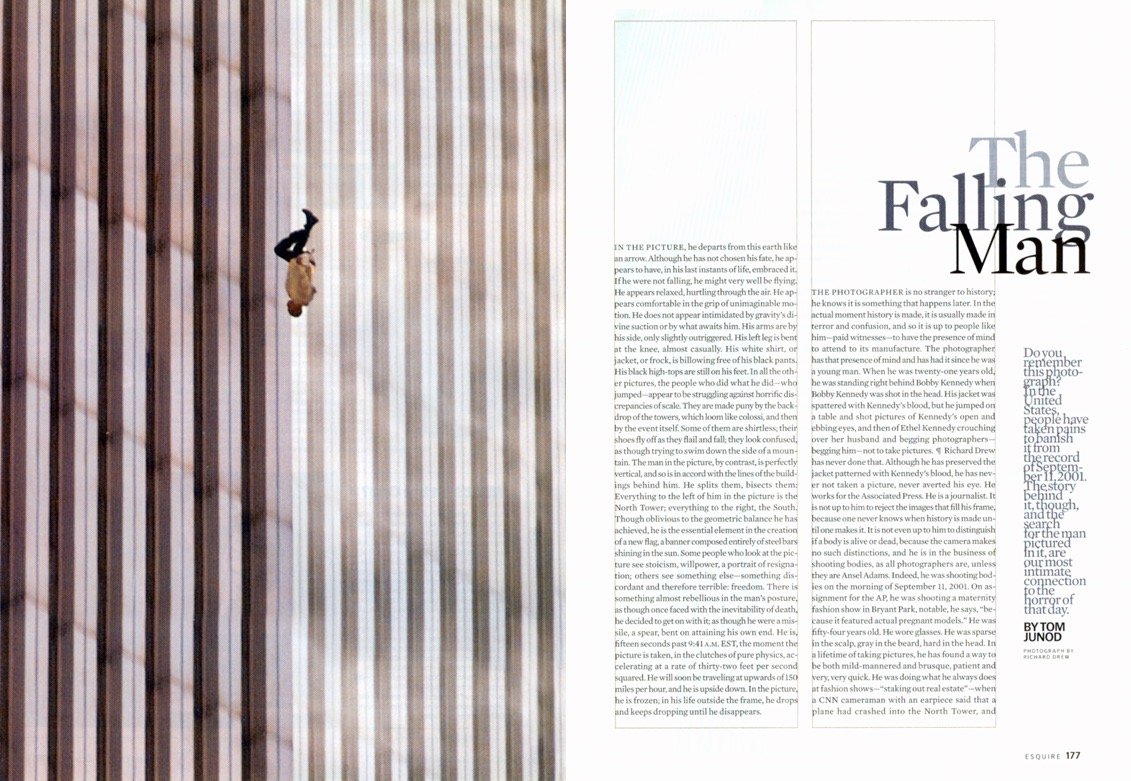



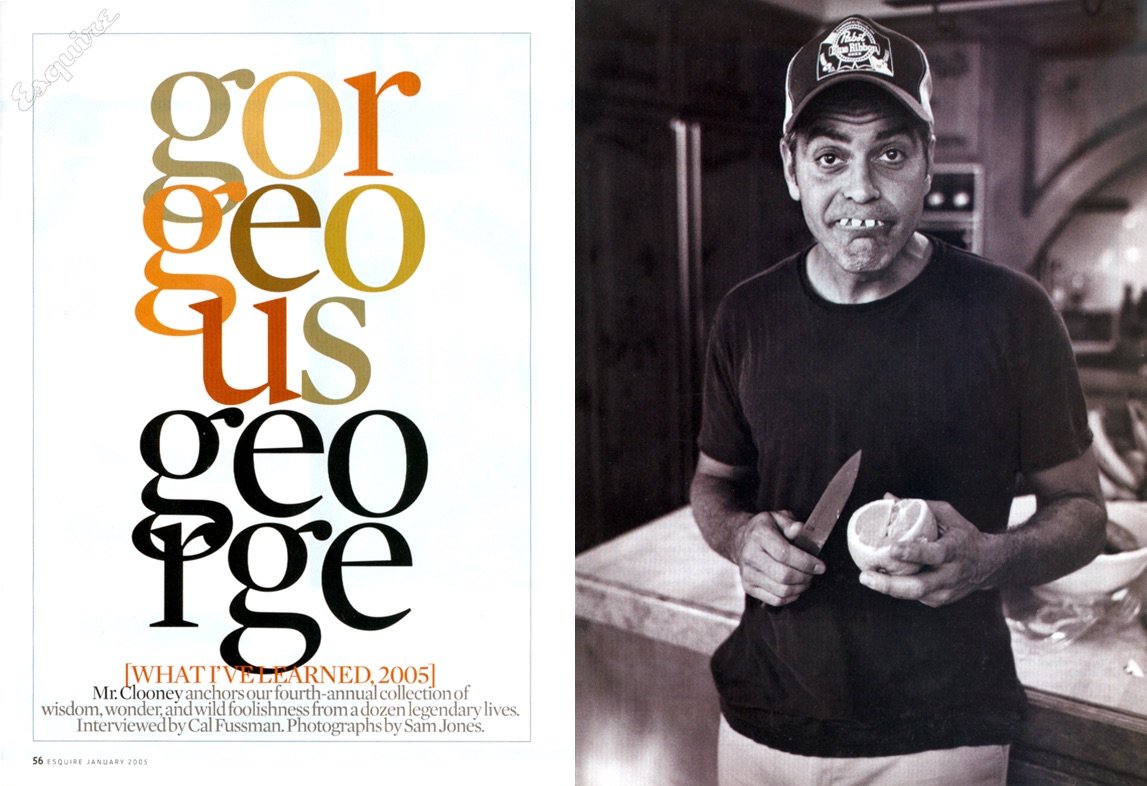
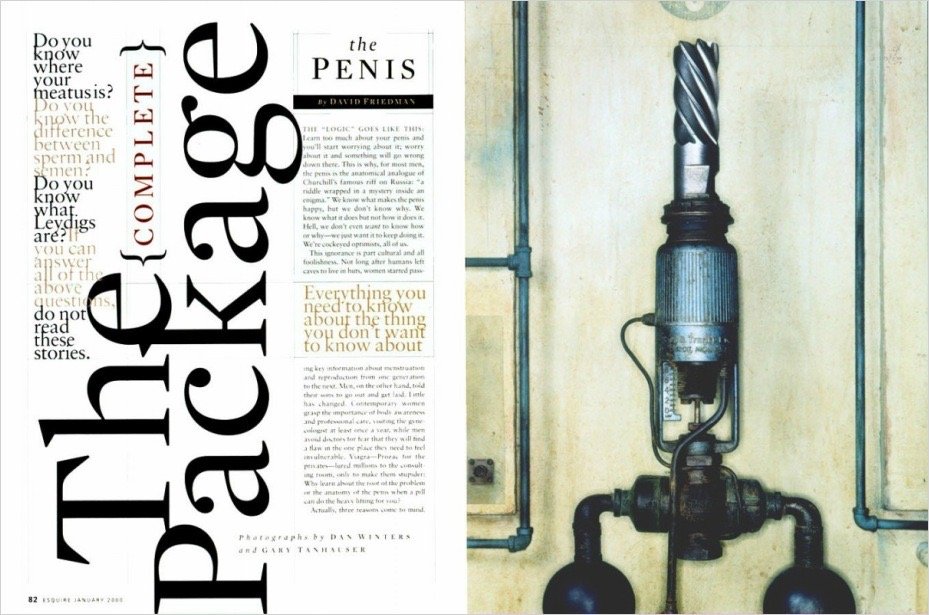
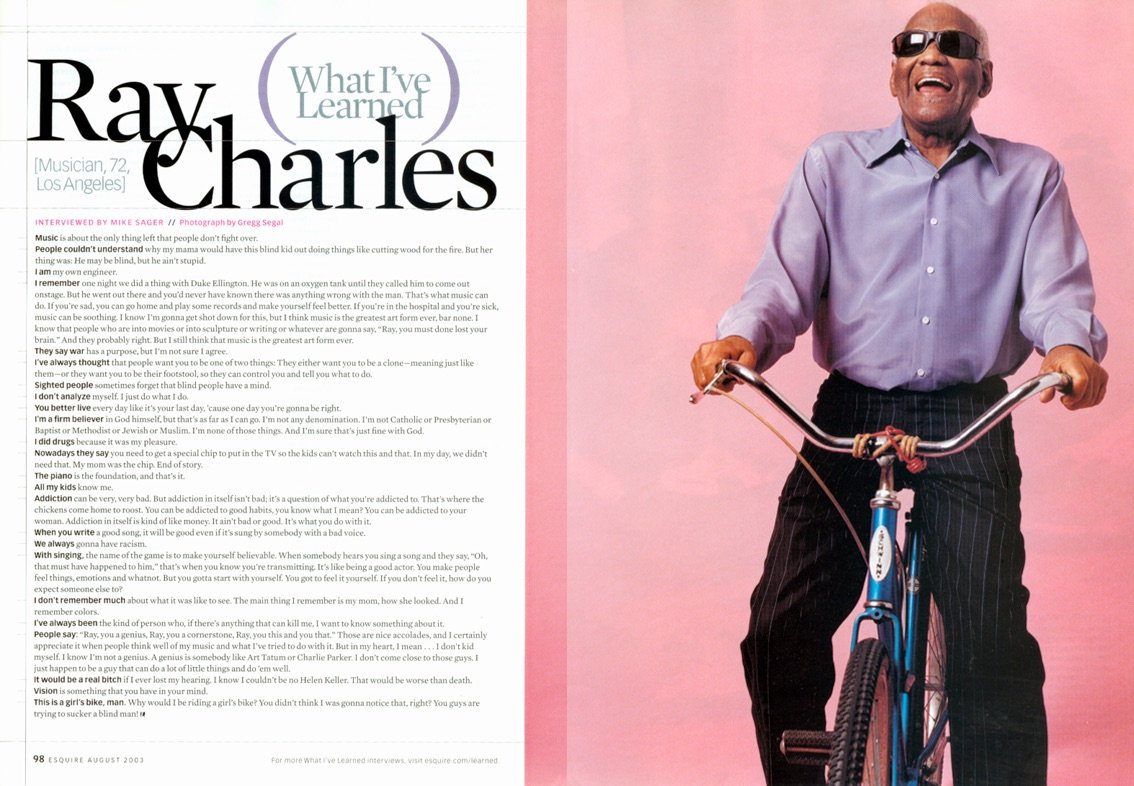
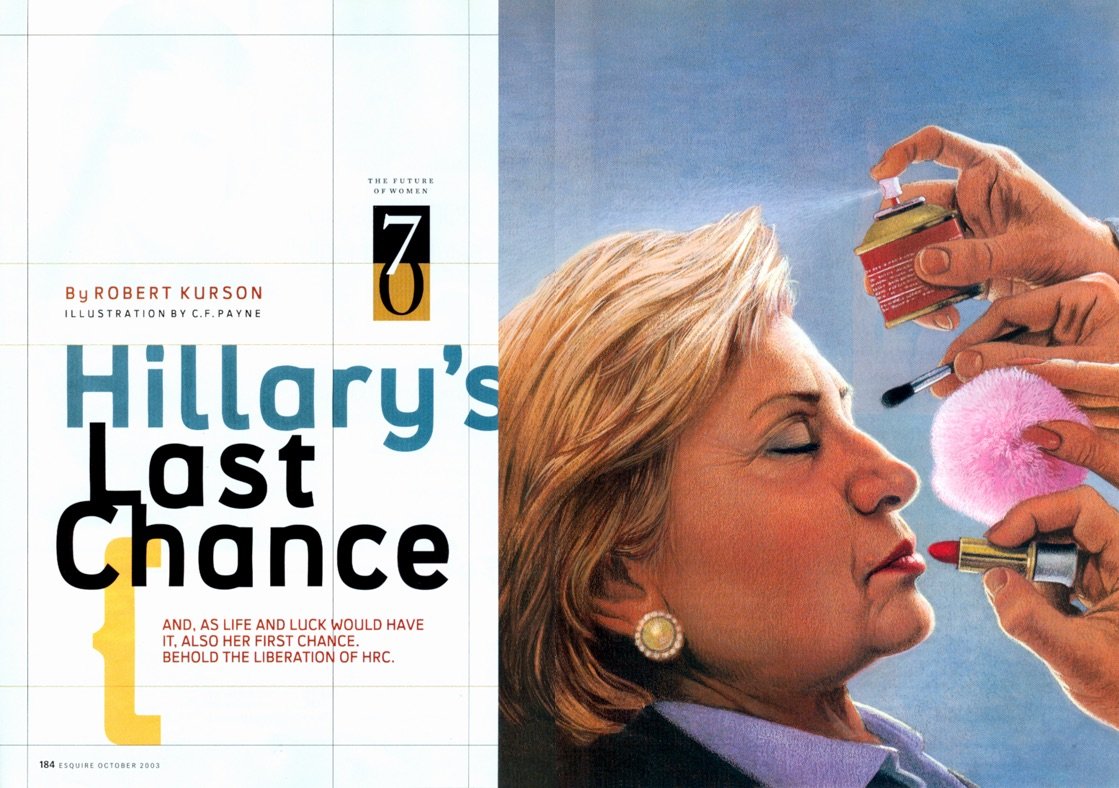
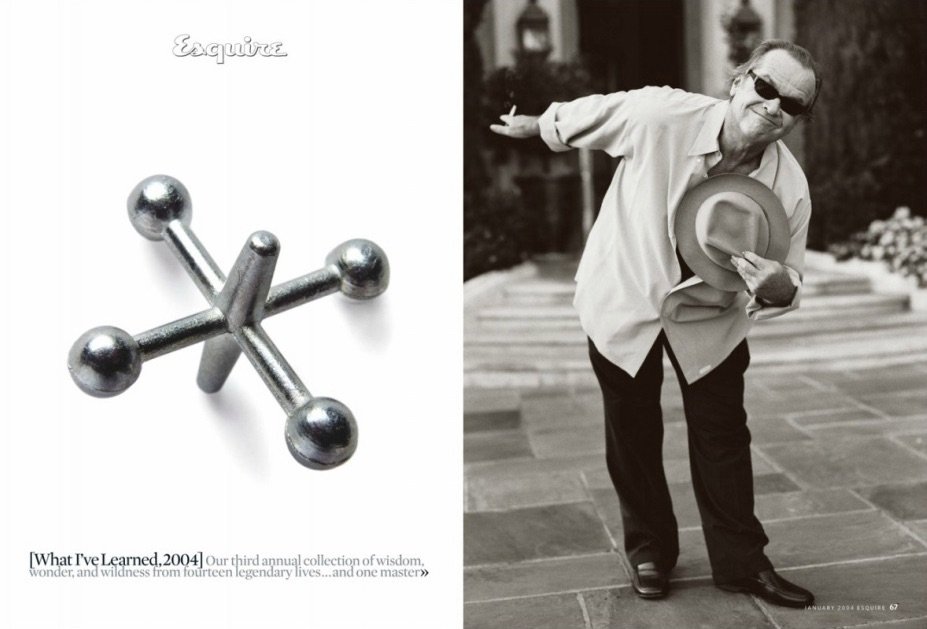

Granger’s early Esquire work
Sean Plottner: Okay, so then let’s get to Esquire. You apparently wrote a letter to Cathie Black.
David Granger: Yeah, I’d been at GQ for five-plus years. I mean, a great opportunity. I got to work with all these amazing writers that I brought into the magazine, but I was eager to try to run my own show and I kept auditioning for editor-in-chief jobs.
Internally I was considered for the Details job, which went to Michael Caruso. I auditioned for a couple of those, including the top job at Civilization, the magazine of the Library of Congress. And my advice to them was they should stop using both the words “library” and “congress” if they were going to have a successful magazine. I don’t think I was offered that job.
But all this time I’d been thinking about Esquire, longing for Esquire. It’d been my first magazine as a man, and I’d kept a very close eye on it. And it was dying when I was at GQ. I mean, GQ was kicking its ass, especially in terms of fashion advertising.
Men’s Health had come on the scene and was kicking its ass in terms of a lot of the lifestyle stuff and active living stuff. It was dying. And it was also badly run. It was not a good magazine. It was very New York-centric. It looked down its nose at its readers. And I read this story on the front page of the business section of The New York Times, about the then-editor of Esquire, and the first sentence was, “Ed Kosner is going to miss this office.”
And it was basically prophesying the departure of Ed and maybe the demise of Esquire. And I’d been watching and longing for Esquire, but that kind of kickstarted me. And I started writing this letter to Cathie Black, who’d just recently become the new president of Hearst Magazines, explaining that I knew three things that none of the previous three editors of Esquire had been aware of. And that those three things were a formula for Esquire’s success.
And so I wrote this letter and just agonized over it. And I was so freaked out about how to get it to her. I didn’t want to give it to the messenger service at Condé Nast, because you know, who knows what happens to it. So I walked it over to the address on the masthead of Esquire. And I just assumed that’s where Hearst was. Of course, they were in a separate building, so I left it with the guys at the desk down there, and only later realized it was the wrong building. Went back and grabbed it from them and took it over to the main tower and left it with someone who eventually got her to Cathie.
And then a couple days later, I started calling her. I just started calling her number and her secretary would say that she’d get back to me. She never did. I’d call again, I’d call again, I’d call again. Finally, at some point she picked up and I said, “Oh, hey, it’s uh, David Granger, I’m an editor at GQ. I wrote you a letter about Esquire. I was just wondering if you’d be interested in talking with me?”
And there was this pause, this long pause. And then she said, “Not really.”
“Nobody who makes $11,000 is buying me a drink.”
Sean Plottner: Oh! Roasted!
David Granger: And then she went on to say that she was very supportive of all their editors and there are no plans for any changes and blah, blah, blah. So I was devastated because I was on the verge of turning 40 and I figured either the magazine was going to go out of business or somebody else would get it. And by the time that person failed, I’d be too old to get the magazine. I had all those thoughts.
But there was no way for me to make another approach. And, like, a year later, this guy started calling my office. Ed Kosner got fired and some guy named Michael Wolf kept calling my office. He wasn’t the media guy. He was a consultant who worked for Booz Allen Hamilton, and I didn’t know who he was, so I kept telling my assistant to take a message.
He called like five times. Then it was 5:30. My assistant was gone, and the phone rings. I pick it up and he says, “Oh, it’s Michael Wolf.”
And I said, “Oh, I’m so sorry I didn’t get back to you. How can I help you?”
He said, “I was just wondering if you wanted to have lunch with Cathie Black tomorrow.”
I was like, “I’m really sorry I didn’t get back to you!”
And the next day I had lunch with Cathie. And it was one of the most intimidating lunches I’ve ever had. It was in the corporate dining room at Hearst, and there was a guy with a thing in his ear and I thought he was, like, security or something. Turns out he was just the guy who ran the dining room. I was intimidated! And we go in and we sit at William Randolph Hearst’s boardroom table on the corner, with waiters and all this kind of stuff. And it was fantastic conversation, like an hour and a half. Really intense.
But at the end of it she said, “Well, do you have any thoughts?”
And I said, “Yeah, I’m just glad I wrote you that letter.”
And it was clear to me she had no idea what I was talking about.
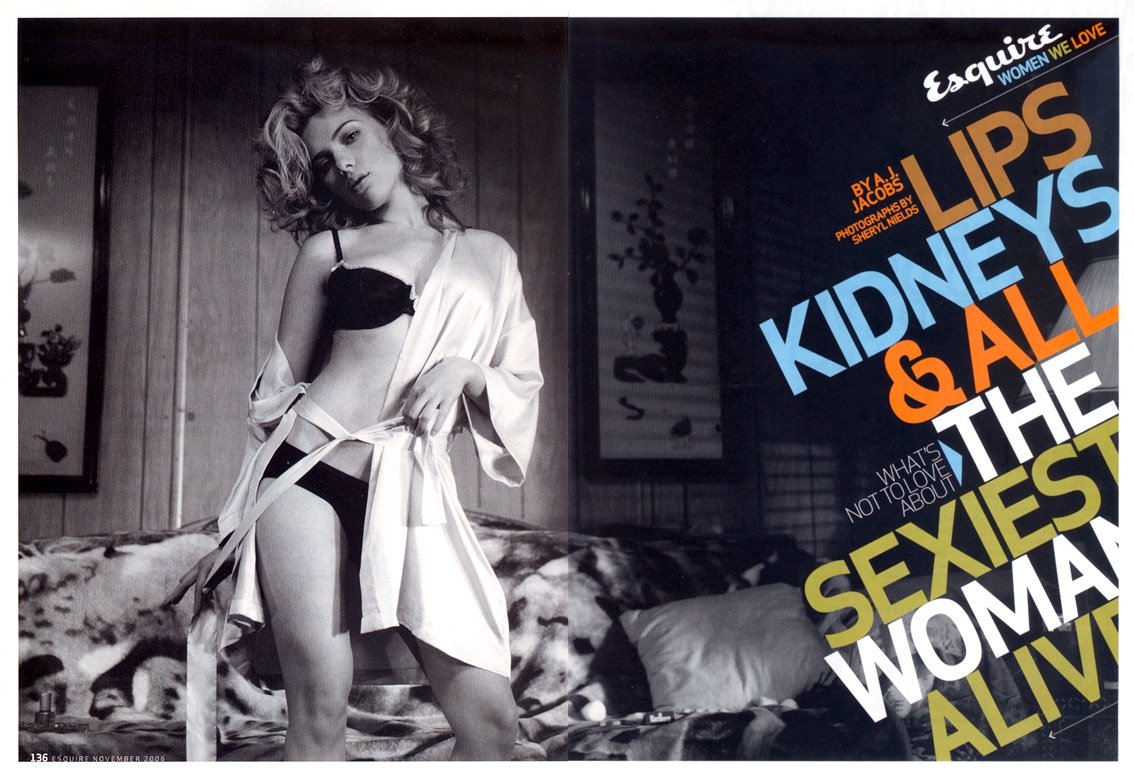
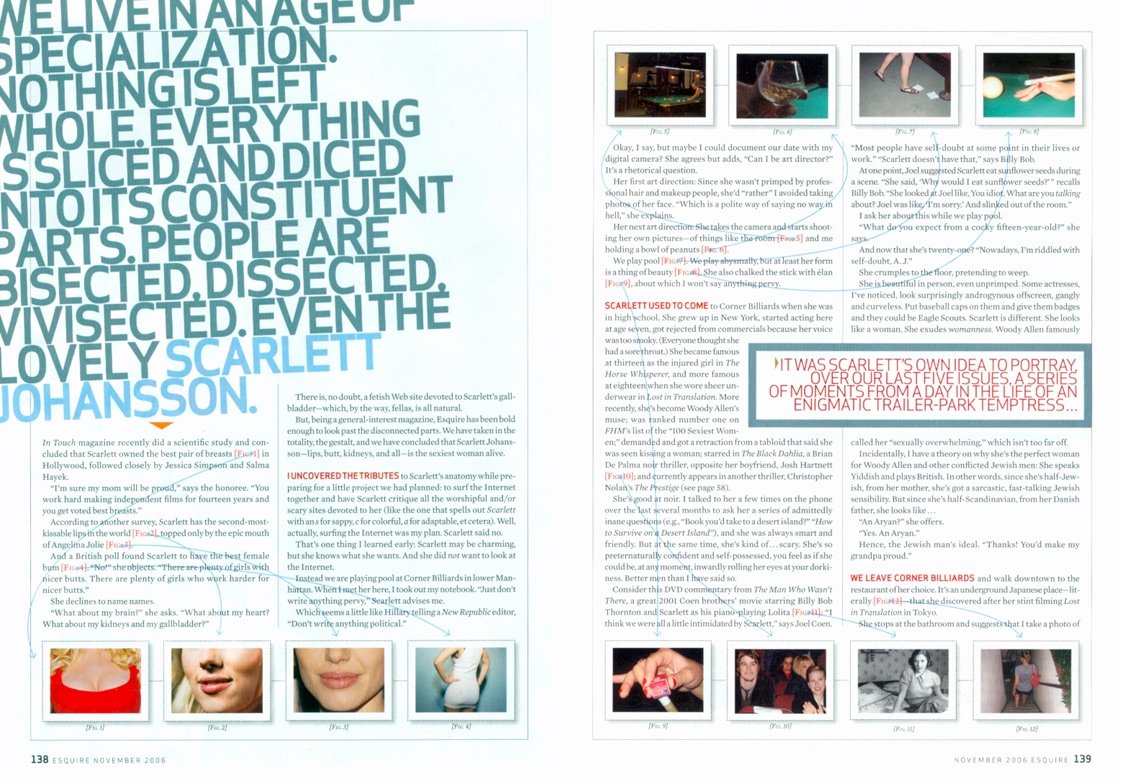
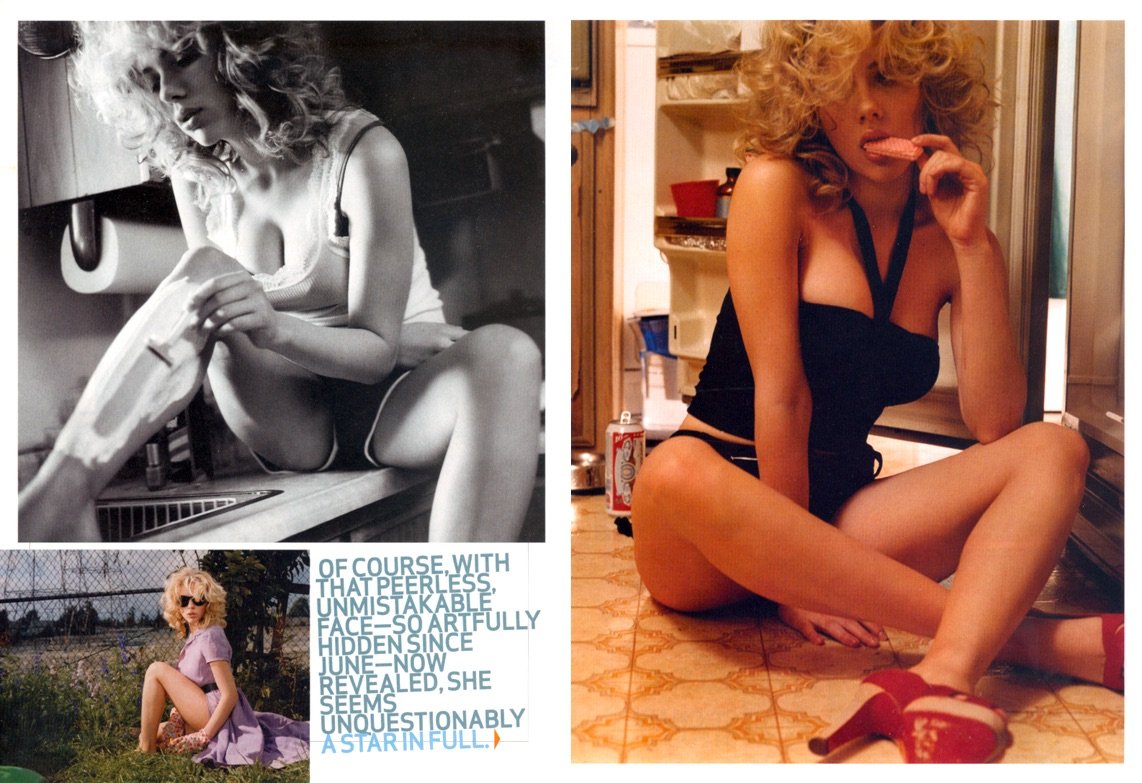
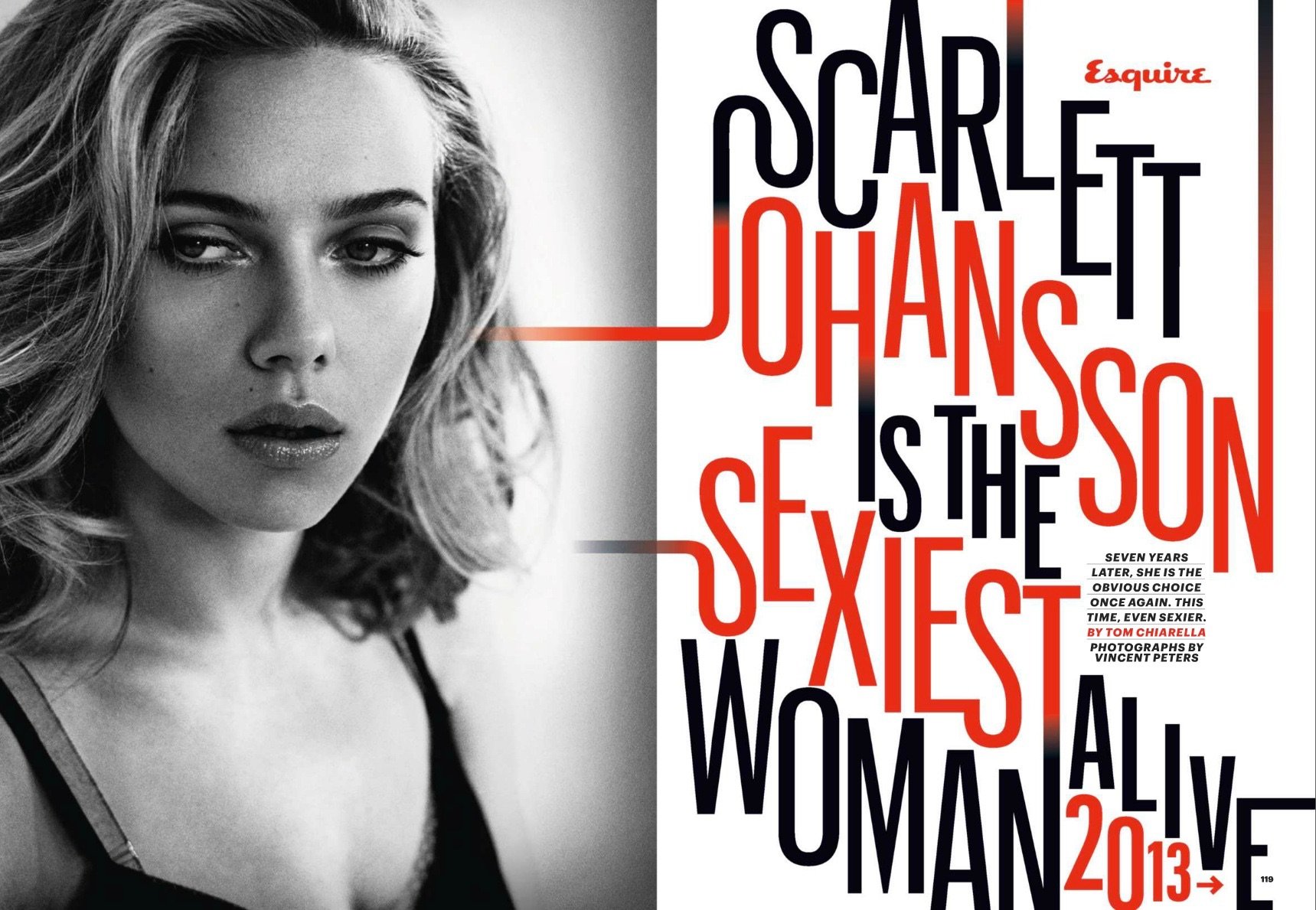


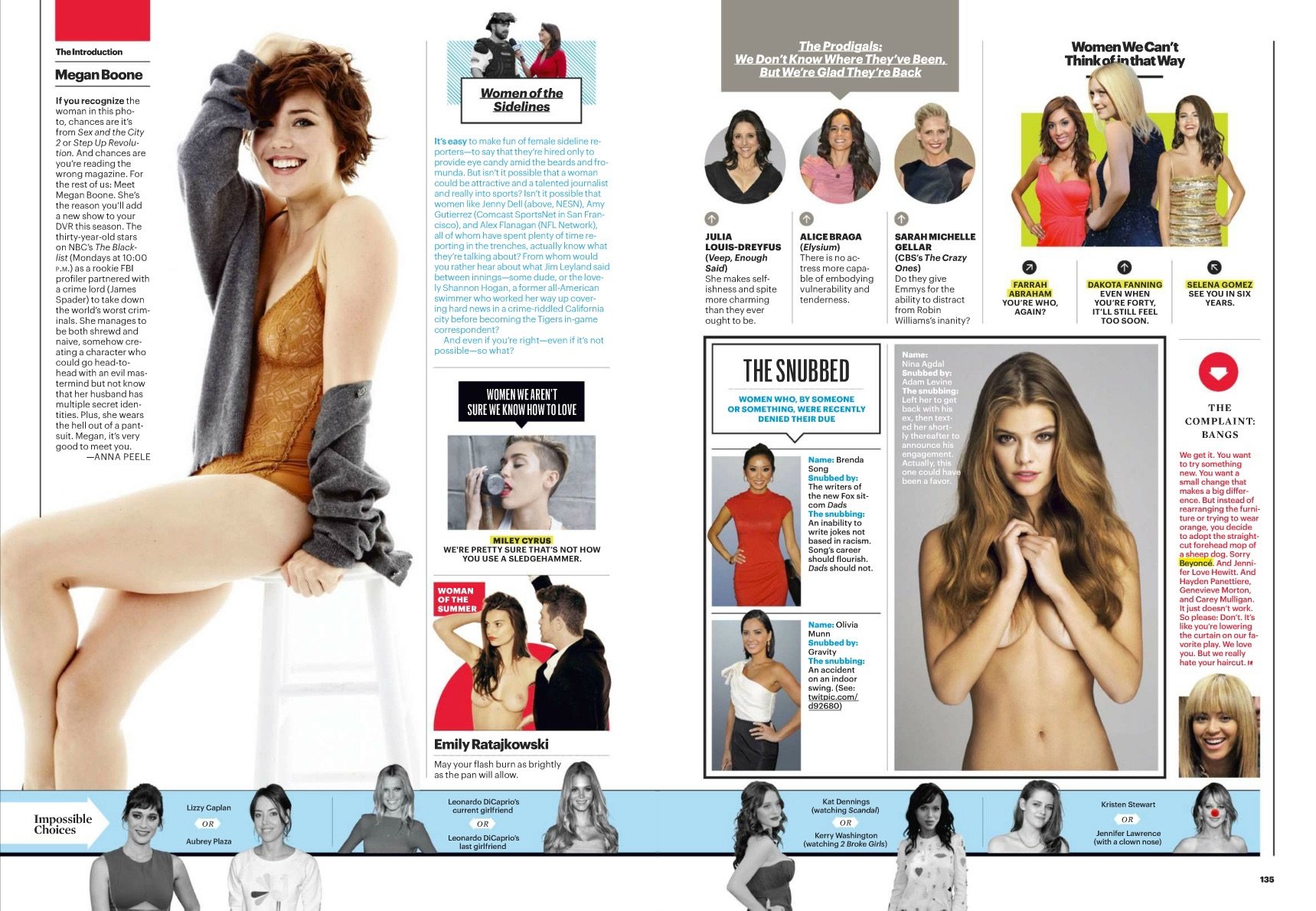
Sean Plottner: Wow. Those three things didn’t matter. Whatever they were.
David Granger: I don’t remember what they were, but they found the letter later and it became part of their PR that I had had the gumption to write this letter.
Sean Plottner: Yep. Yep. It’s a rags-to-riches story. So you get to Esquire, you’ve got the job. Pretty exciting I would imagine.
David Granger: Yeah, it was my life, man. I was 40 years old.
Sean Plottner: Well, and you saw a magazine that was broken and needed to be fixed. You had a plan, you fixed it. What did you learn quickly that maybe you hadn’t been told about that job? What were the big surprises, if any?
David Granger: Before I got into that job, I knew exactly what I needed to do. Cathie had asked me to write up a plan and part of that plan was I had to write and annotate my first three tables of contents. I had to explain my cover strategy and what my first three covers would be.
All this kind of stuff I knew exactly what to do. But you get in there and you start having meetings with circulation people and ad salespeople, and they all know exactly what you’re supposed to do. And it’s not anything like what your idea was. You know? It’s like they know because all these things have been tried over and over again for 60, 70, a hundred years.
They know exactly what doesn’t work. They just have no freaking idea what does work. But the thing that any young editor is going to be faced with is that everybody second guesses you. You have two issues when they go, “Oh, that’s interesting. And that’s interesting.” And then on the third issue, it’s pure second guessing. Every meeting is called to tell you what you’re doing wrong.
And that’s the thing you don’t understand. You think you’re going to get a long runway. And you get to execute. And really for the first couple issues, the cupboards were bare, man. There was not a single story! We were supposed to be putting out the fashion issue. There hadn’t been a single fashion portfolio shot. There was not a cover planned. And we had, like, four weeks to get that issue closed. We had to beg, borrow, and steal.
So any thought you have that you’re going to plan anything is—and then of course, I fired everybody the first day I got there. And so I had like four people helping me try to put out a magazine in four weeks.
And so it’s just pure panic. And then you’re getting second-guessed every day of your life. So it takes a while and you have to be under the threat of being fired, before you just decide, “I’m going to do what I’m proud of because I’m going to get fired anyway.”
But, luckily, I made a couple of good hires. I hired Peter Griffin, who is the smartest man alive, the best editor I’ve ever worked with, and he agreed to come on on a temporary basis. And then I hired writers, basically all of whom moved over from GQ to Esquire. So I had a core group of people that I could bounce stuff off of. And then Lisa Hintelmann came over from GQ and I finally got Helene Rubinstein, who was at another Condé Nast magazine, to come over.
And we assembled a little core of a support group and things started to happen. But it was like three years before anything good really happened. And I’ve got to tell you, I guess there was a little bit of patience, but that patience ran out by the time of my second budget meeting. My first budget meeting—I got the job in June and the budget season always starts in September. So a year from that first September, I’d done 15 issues and we’d done a couple questionable covers. But the cover that was on the budget book was my Mr. Rogers cover. It was like Fred Rogers. This was a long time ago. And it was shot by Dan Winters. So it was an eccentric photo. And it was Mr. Rogers. I mean, it was Mr. Rogers.
It was the Heroes Issue. And it was a really good issue. But we got into that budget meeting, and we go through it, and everything’s fine. And Cathie says to my publisher and everybody else, “Valerie, you guys can go. David, would you stay for a minute?” And she and her number two, Mark Miller, are sitting there and they pick up the Fred Rogers cover and they go, “What the fuck are you doing?”
Sean Plottner: Wow. Welcome to the neighborhood.
David Granger: Yeah. And that was when I realized that I was not long for Esquire magazine, but I managed at that point to kind of nut up and do the things that I really wanted to, and the things that I thought Esquire should be doing. And I got a little more time and things really started to turn around. It took two years, but things started to turn around.

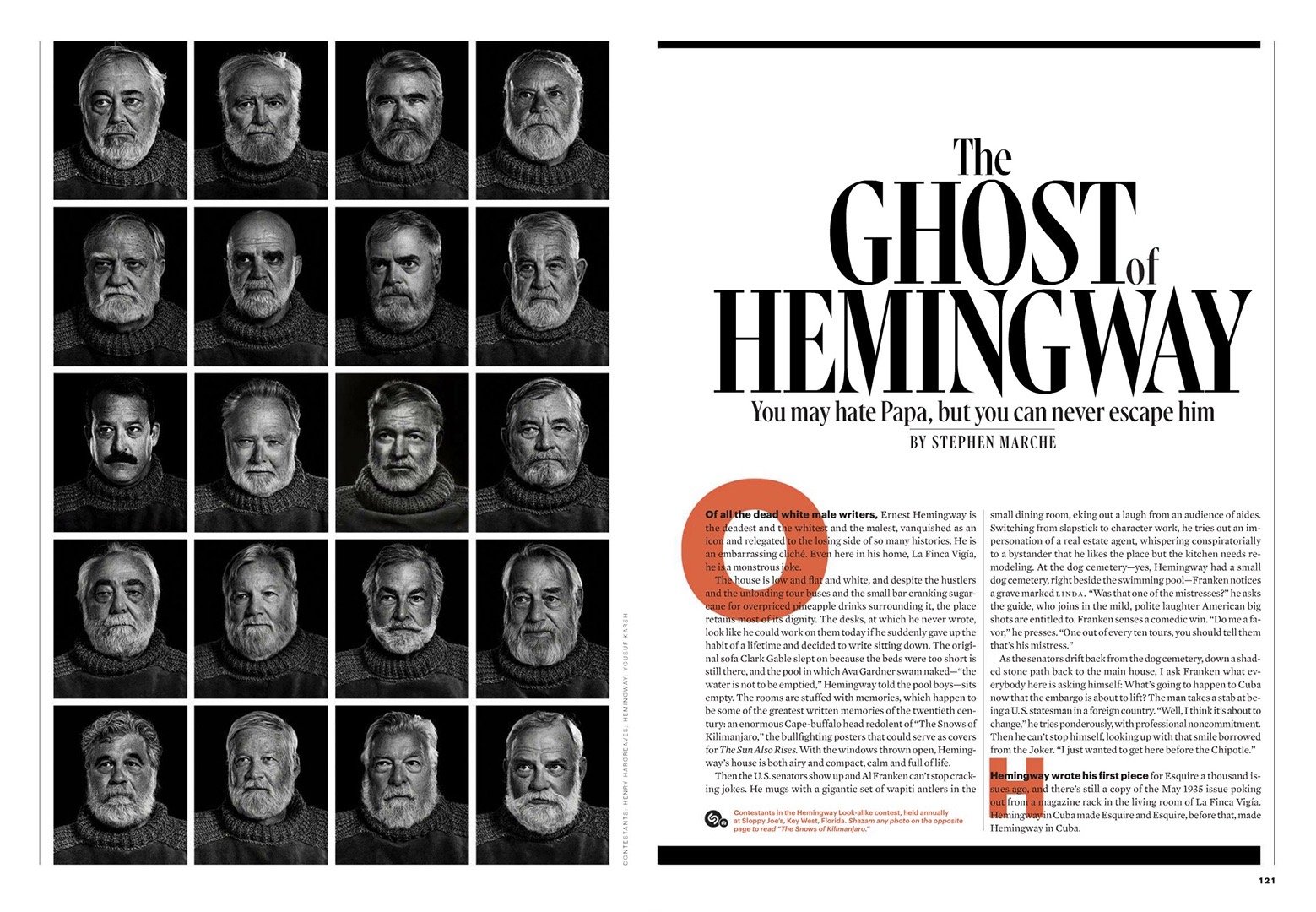

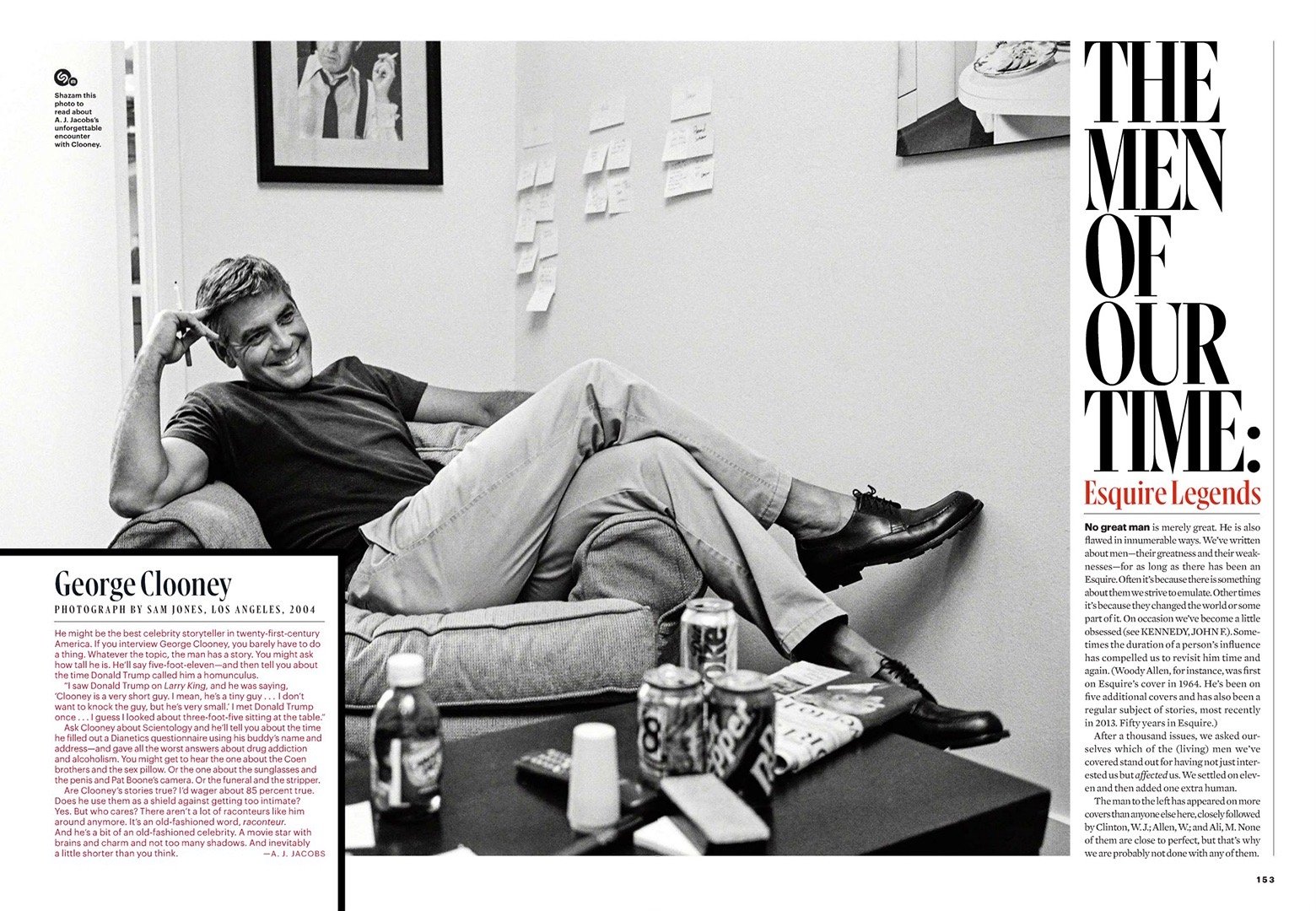
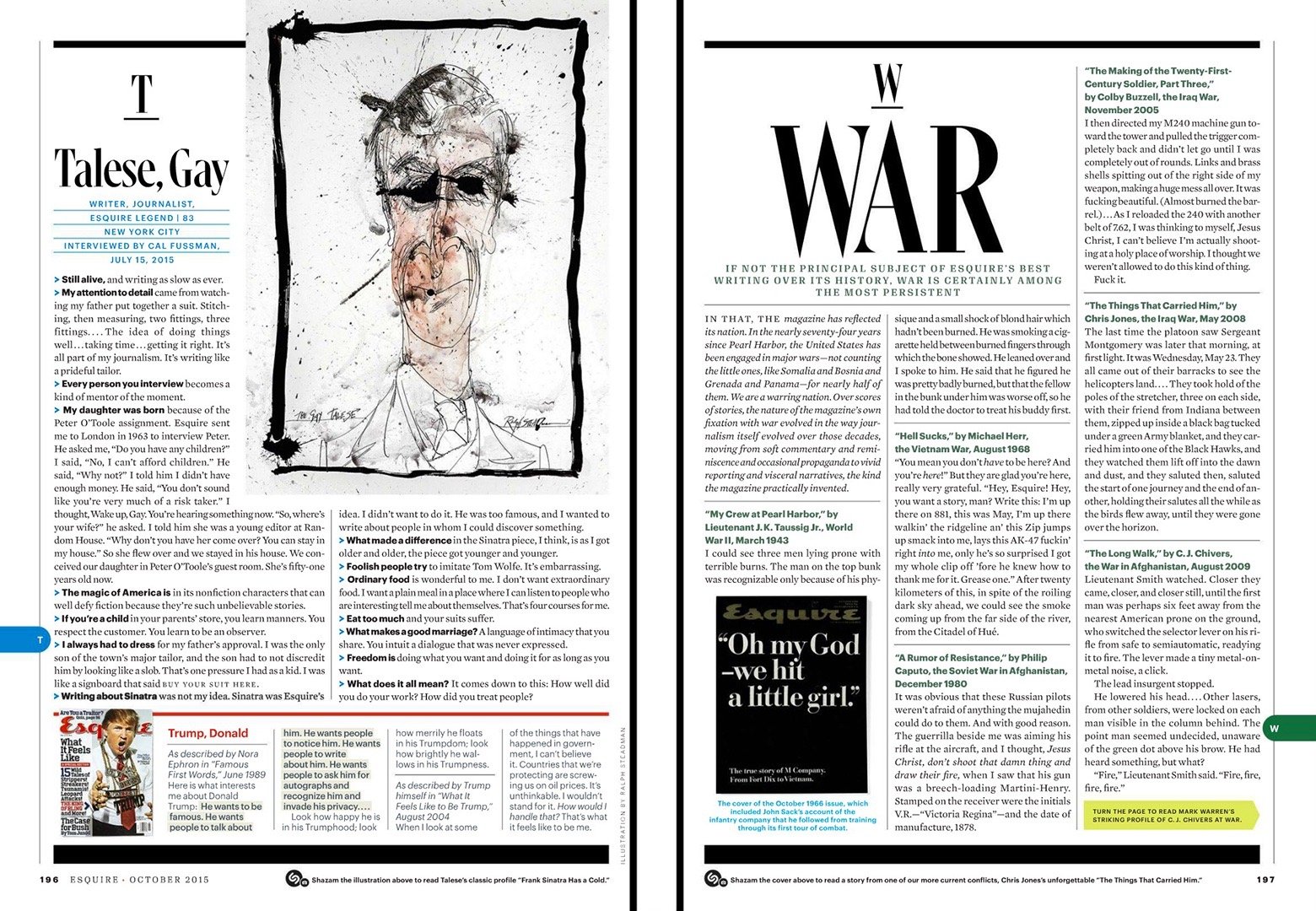
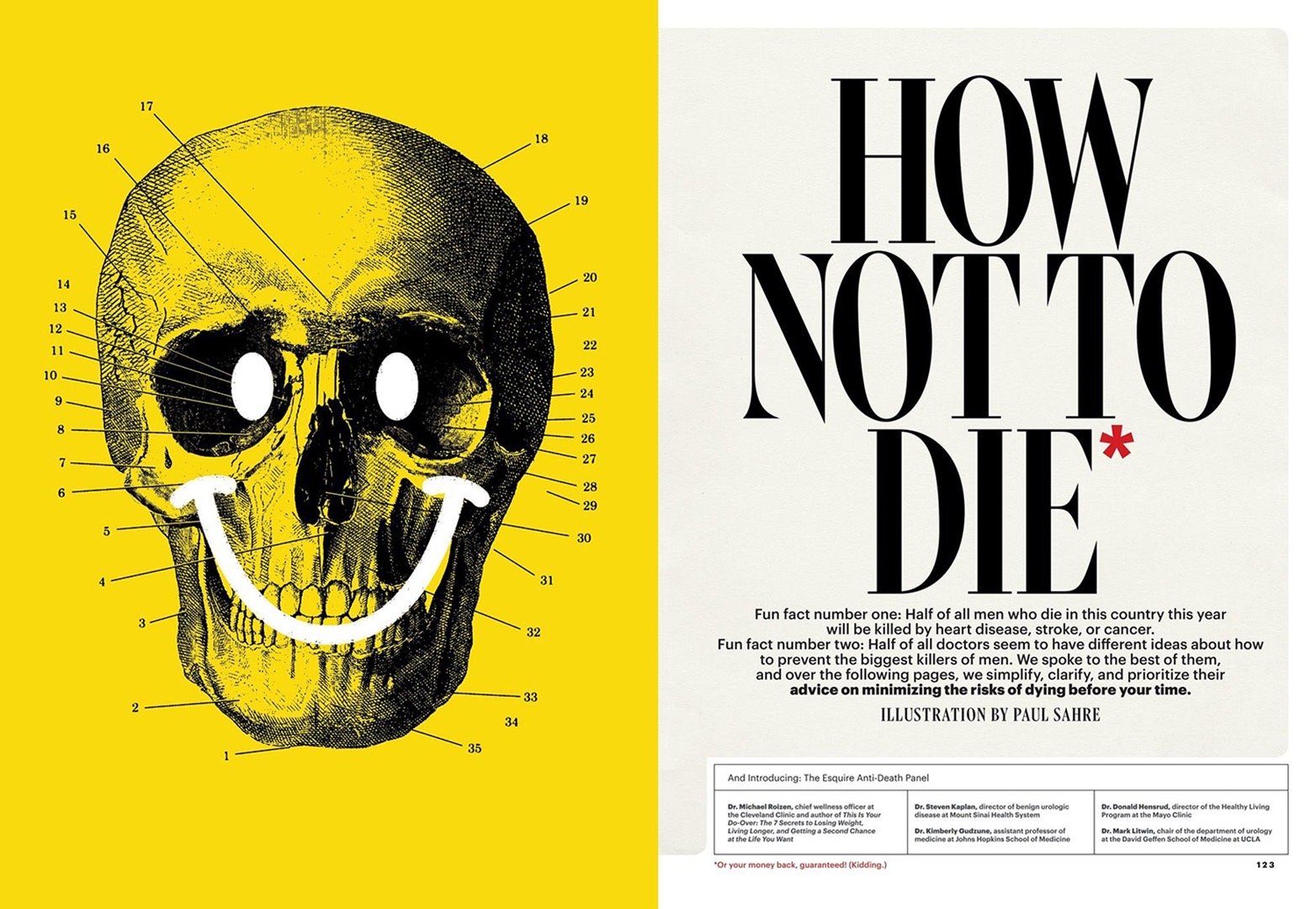
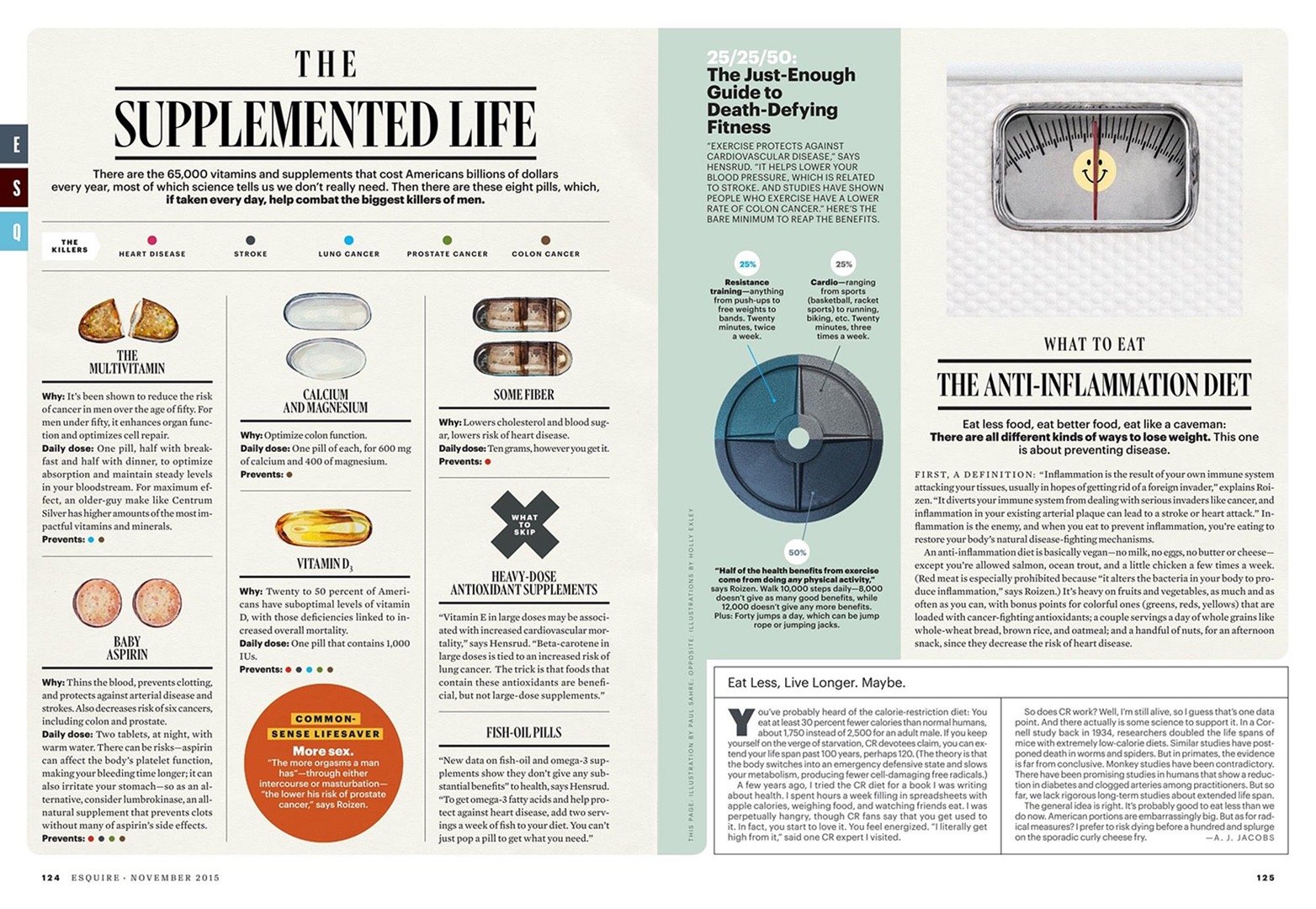
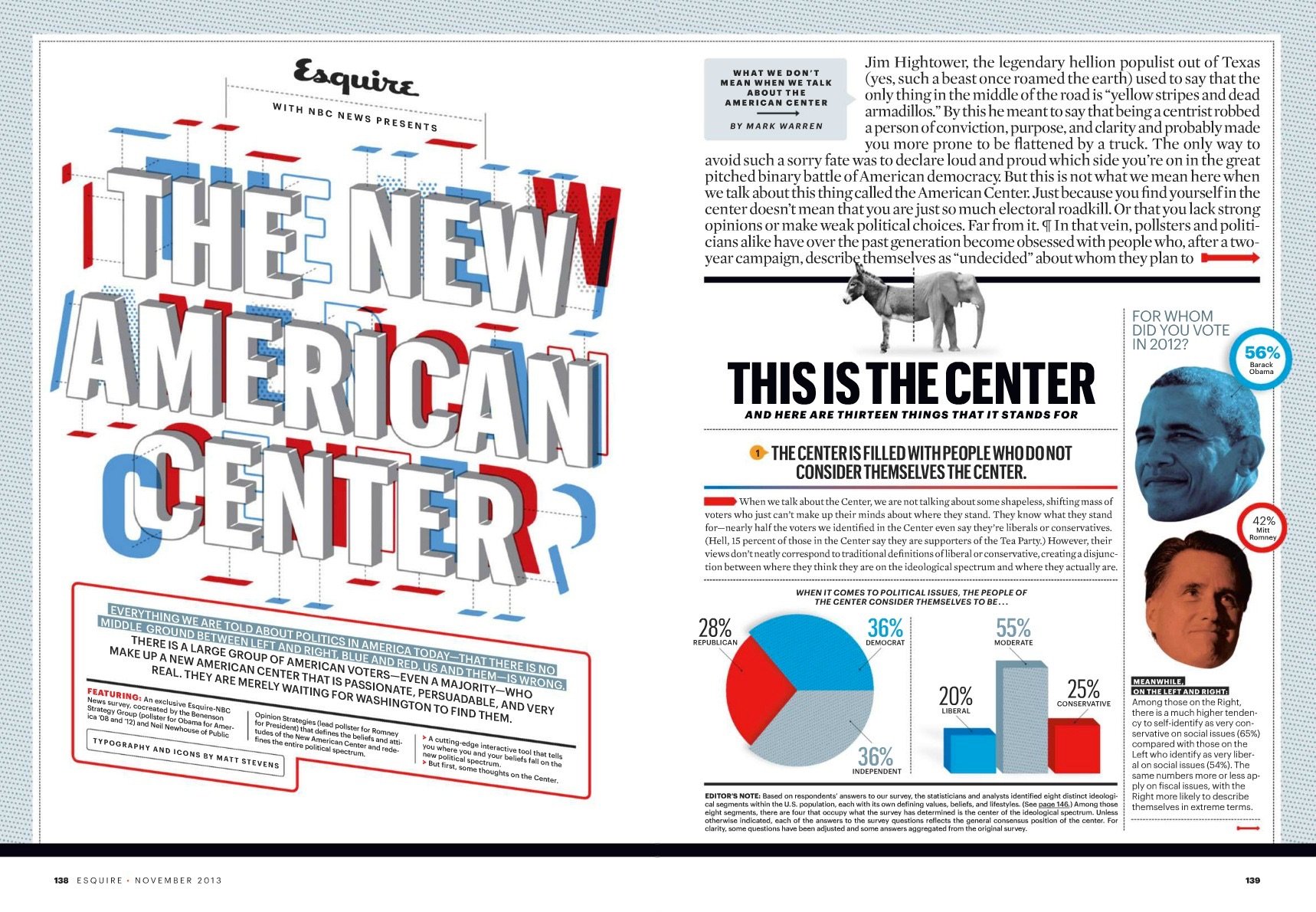

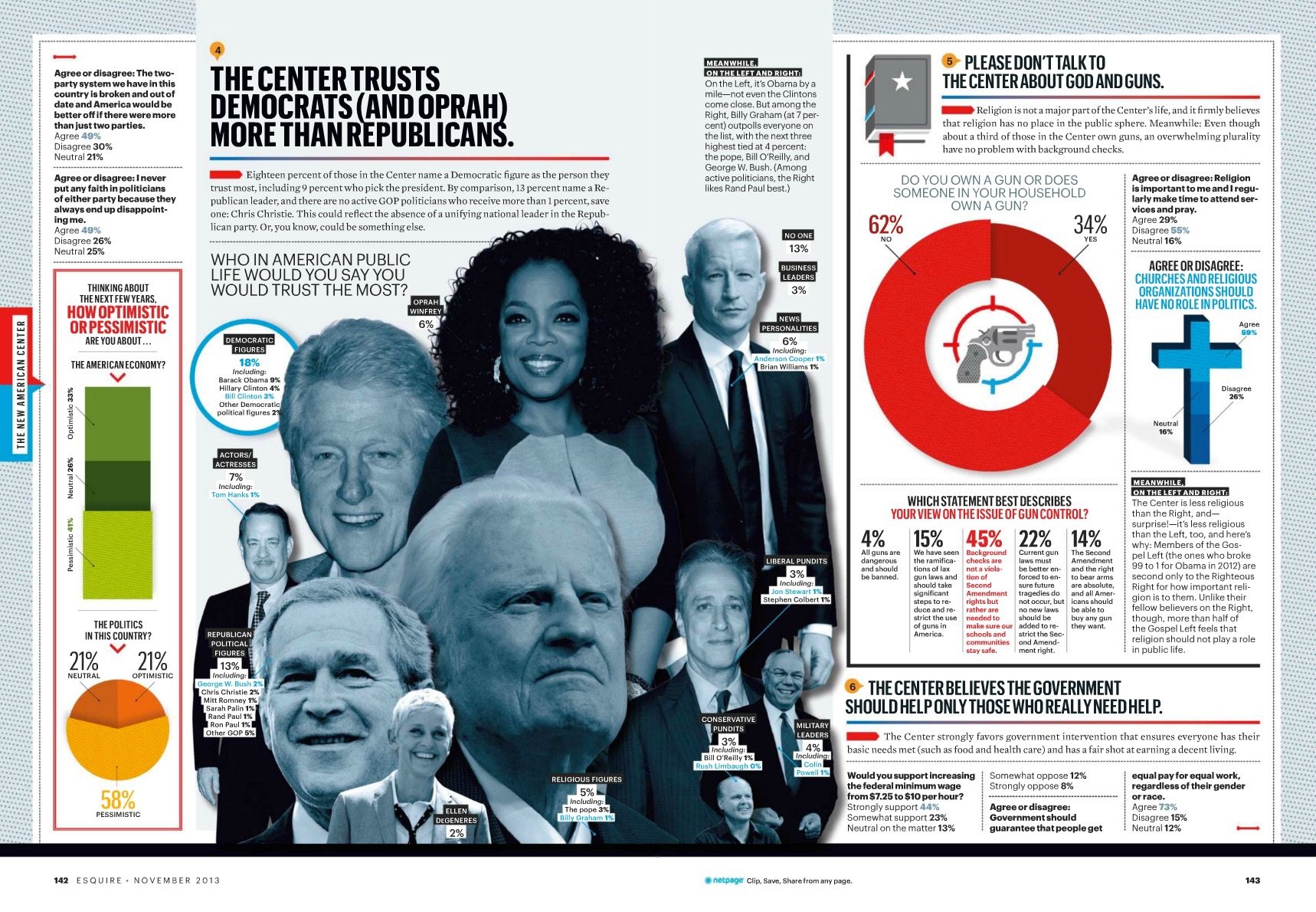

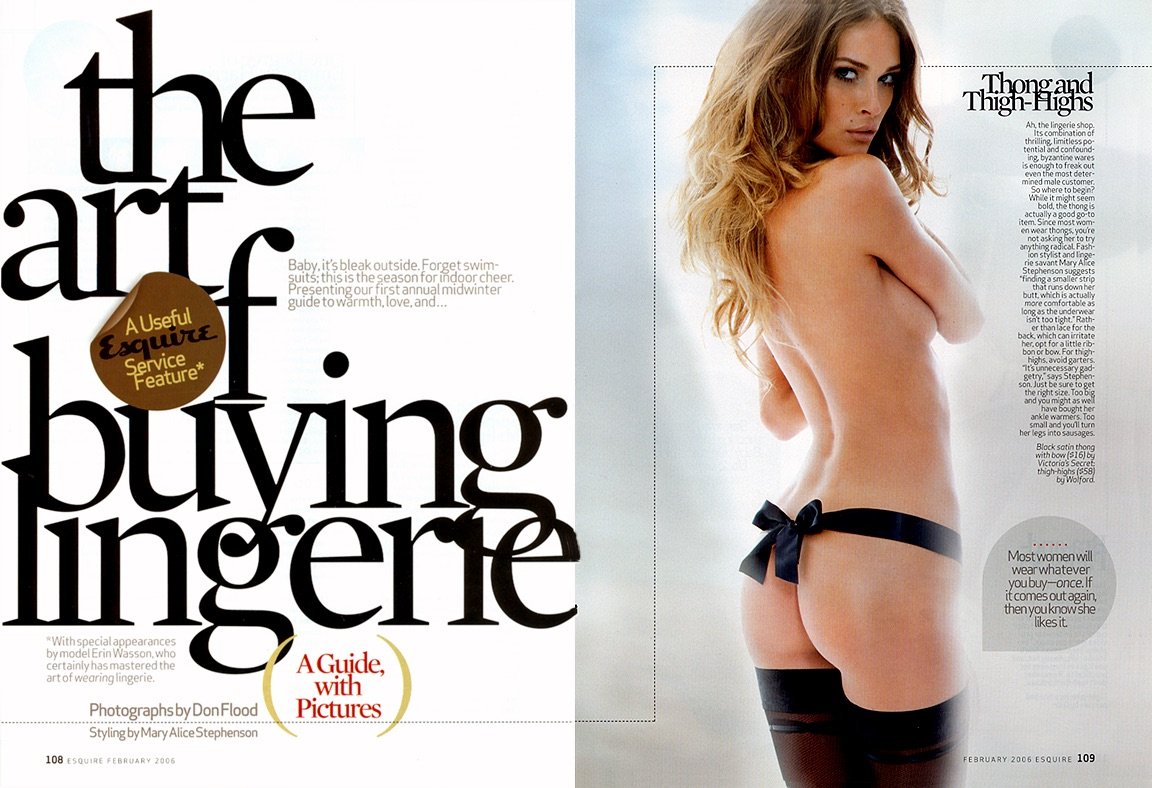
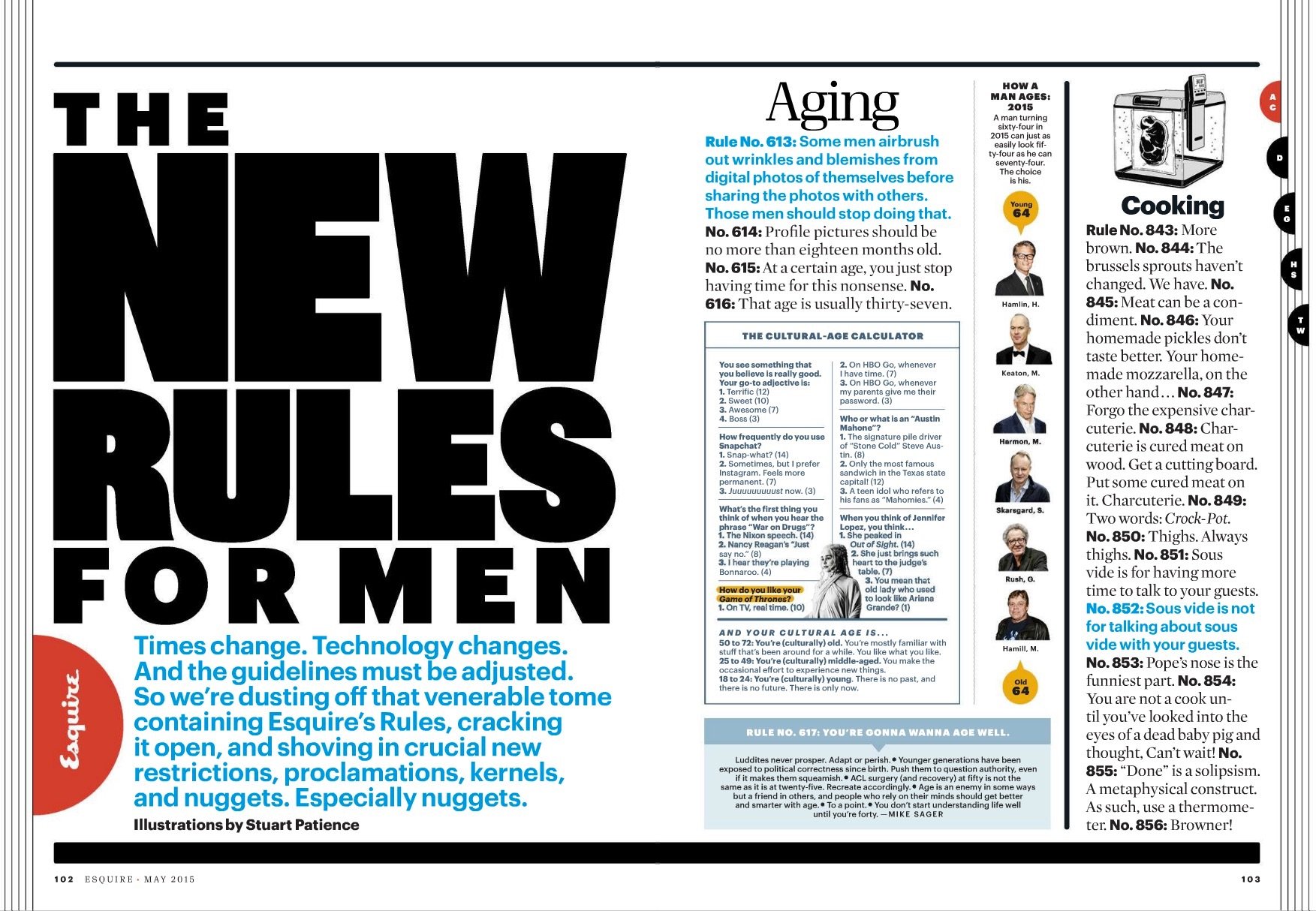


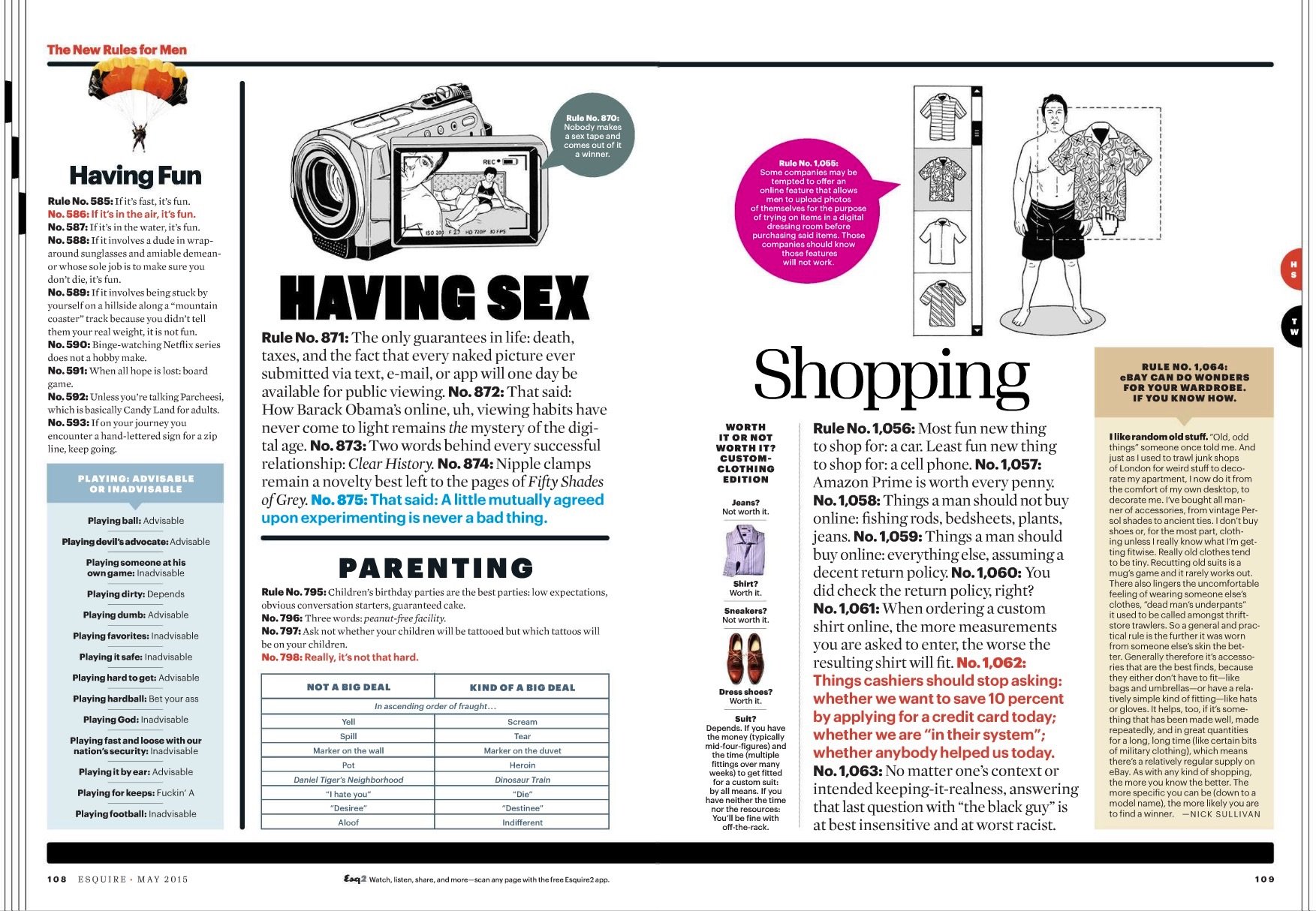
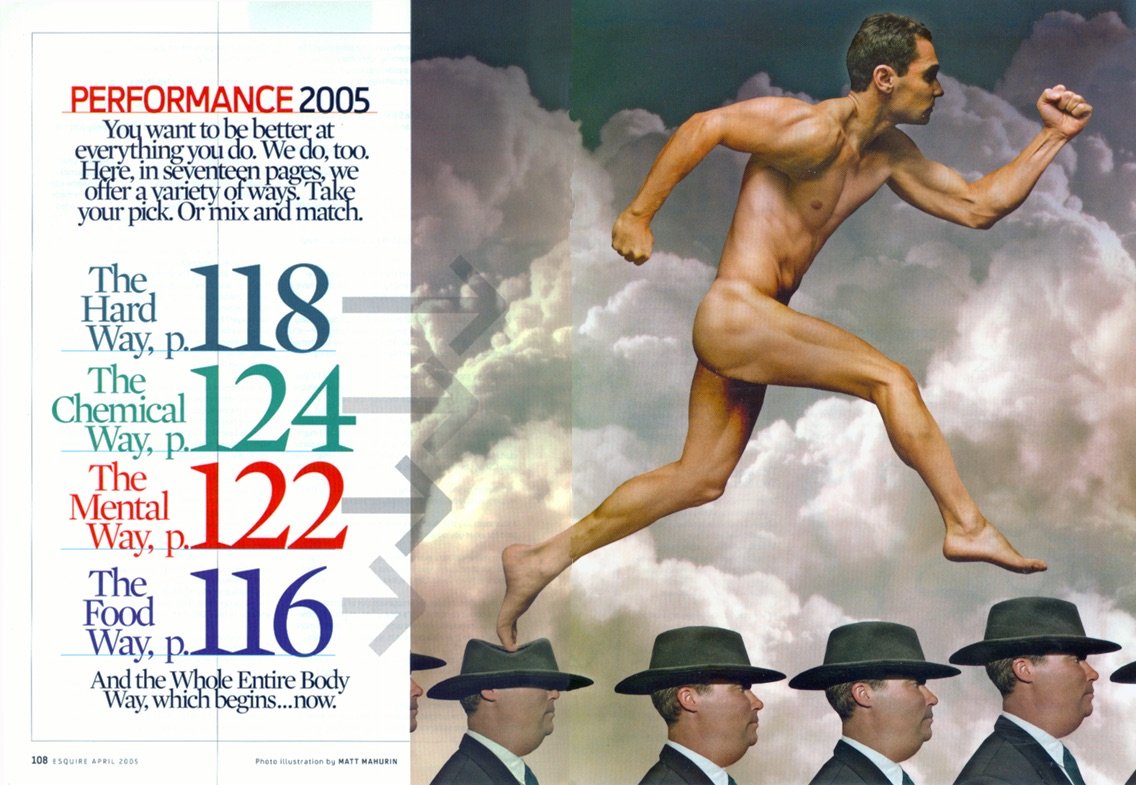


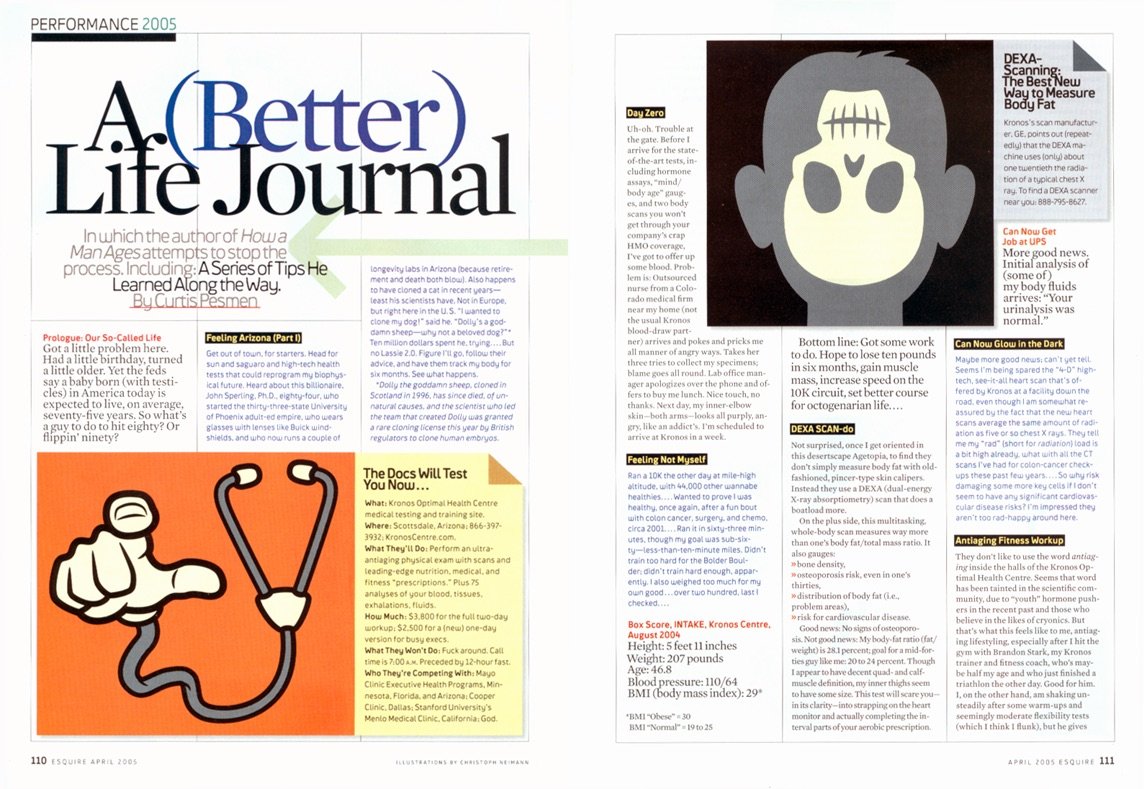
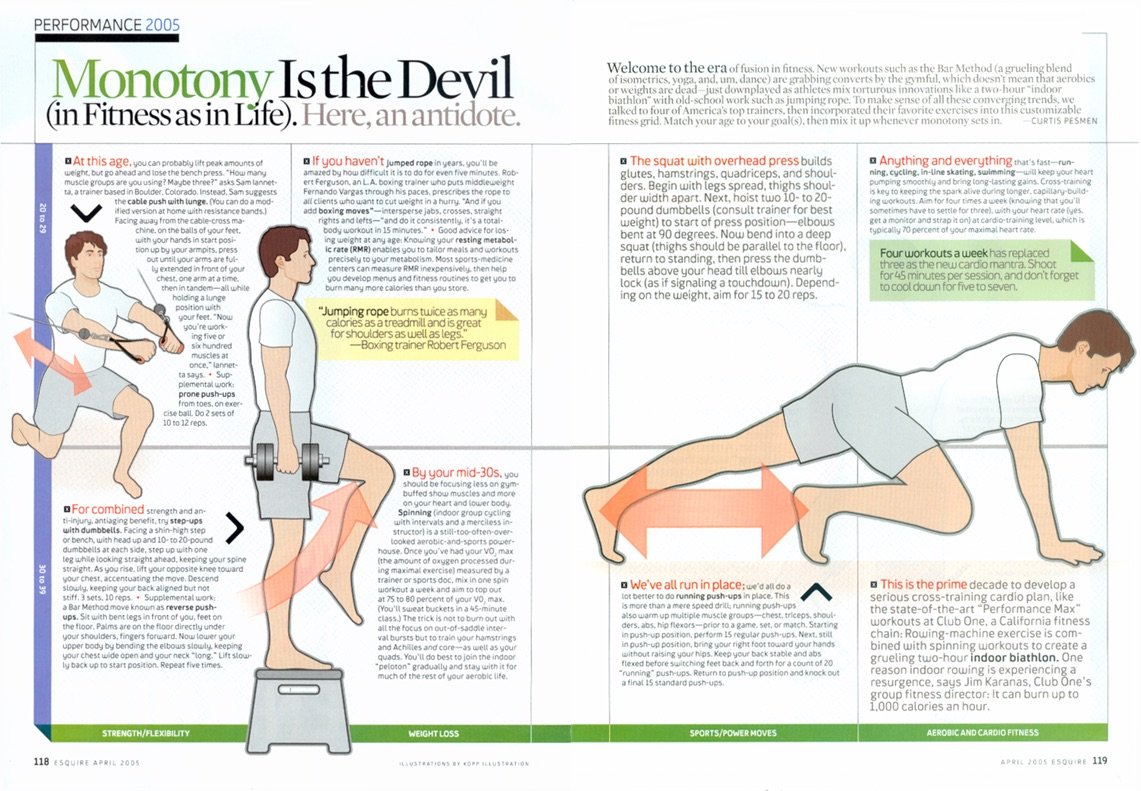
“We decided to make Esquire the laboratory for trying to figure out what a magazine was capable of beyond what magazines had traditionally been capable of.”
Sean Plottner: That’s interesting about having such a detailed plan, knowing what you wanted to do. It reminds me of the old [Mike Tyson quote], “Everybody has a plan until they get punched in the face.”
David Granger: That’s exactly right.
Sean Plottner: Yeah. And that’s very interesting that you had to create your own table of contents. That’s an intriguing exercise.
David Granger: That was an amazing weekend. She gave me that assignment on the Friday of Memorial Day and told me that she wanted it on Tuesday. And it wasn’t just like the TOC, it was, like, marketing plans for Esquire. It was staffing plans. It was an intense weekend. But luckily I’d been up for the Details job, I’d been up for the Civilization job, a couple others, and I had all these plans I’d written up for those people.
So I scavenged those and then I called all my writers, took them into my confidence and begged them for ideas. It was an intense weekend. But it’s helpful to have a plan, even though pretty soon that plan’s no longer of any use.
Sean Plottner: Yeah. The punch in the face. You mentioned Helene Rubinstein—I haven’t been shadowing you your entire career, but Helene hired me when I made my big move from Knoxville to New York. She hired me in 1989 at US Magazine.
David Granger: Wow.
Sean Plottner: I became a music editor and worked there for a year or so before I went over to The National. So, interesting how different paths have crossed. What was your favorite part of the job as editor of Esquire?
David Granger: There are a lot of things to love. I loved having access to most people that I wanted to talk to. I loved working with writers. I loved having a full-time staff of, like, 40 people, and then another 10 or 15 people who were regular contract people who came to me every day with stuff I should be reading, or stuff I should listen to, or ideas for what we should do in the magazine.
People were incredibly passionate about working in Esquire, but ultimately, I think starting in 2006, I love the fact that we just decided to make Esquire the laboratory for trying to figure out what a magazine was capable of beyond what magazines had traditionally been capable of.
And that was 2006. And that was just as everybody was saying that the internet was going to destroy all forms of print. And we just had to prove that that wasn’t true. And so we used things like the internet to drive more people to the magazine. We played with all sorts of insane technical innovations like the first magazine cover on which words and images moved.
Esquire’s 75th anniversary issue featured a groundbreaking “e-Ink” cover
“We just started playing with the physical properties of the magazine—paper and ink and words and images—and just seeing what we could do.”
And that was in 2008. We did the first augmented reality issue of a magazine. But even more than that, we just played with what a magazine was capable of inside. We used every bit of the magazine, like nobody since Mad magazine used the margins. So we started using the margins. We published an entire short story in the bottom margin of the magazine one time.
We just started playing with the physical properties of the magazine—paper and ink and words and images—and just seeing what we could do. We once did three covers on this issue about the State of the American man, and we had images, up close facial images, of Justin Timberlake, George Clooney, and Barack Obama, all shot by Martin Schoeller. And we perforated the three of them so you could just tear them apart and create 27 different faces of what the American man looked like. I mean, it was simple stuff, but nobody did it.
And we just had a billion freaking ideas. We created our own apps to turn magazine content, not web content, into something that could be shared on Twitter or emailed or texted or whatever. It was amazing the amount of video we did, especially when we had the iPad app and the iPad was going to be the “salvation of magazines.”
We did movie trailers for every issue—of a print magazine! We just had so much fun. And I think the ability to just play with possibility was the best thing about my job—and the people who helped me with it: Peter Griffin, David Curcurito, my design director, Rich Dorment, and all the young editors, Ryan [D’Agostino] and Ross [McCammon] and Tyler Cabot, and everybody.
It was just a laboratory man. It was fun.
This 2009 cover was the world’s first “augmented reality” issue. Below, an introduction to Esquire’s new iPad app.
Sean Plottner: Yeah, that’s a wonderful way of putting it: Playing with possibilities. You certainly did, it was fun, innovative. I remember your iPad app—if it was even called that when it first came out—was extremely innovative for its time. The digital cover. Very interesting and fun stuff.
How hands-on were you with copy? Writing headlines? Captions? Did you have people doing all that and you’re signing off on it? What was your role with that?
David Granger: It depends on what kind of copy. I was very hands-on with the little stuff because the little stuff is the most important stuff.
Of course, headlines and subheads are incredibly important because that determines, in a lot of cases, whether people are going to read anything. But, like, captions, and all the little tiny items that are in the front of the book, and all the marginalia we started doing. That’s the stuff that everybody’s going to read because it’s short, it’s easy.
And there was a guy who ran Entertainment Weekly named Jim Seymore—back in the nineties, I guess—and it was one of the great magazines because he demanded such excellence from all the little stuff. I remember admiring that so much. The big stuff, it’s hard in its own way, but it’s the little things that people are going to remember or they’re going to enjoy and it establishes not just a voice, but a whole environment of entertainment. You want a magazine to be an enjoyable entertainment experience and it’s those little things that do that.
When it came to feature stories, Peter Griffin and I—Peter had worked at Time Inc., and you know that was editing by committee at Time Inc. A story would go through three layers, at least, of editors before it hit the page.
And Peter and I wanted our editors to be responsible for their own stories. Their writers had to see them as the ultimate arbiters of it. That’s what we wanted. We backstopped them. Peter did an amazing job helping people with their edits on things. And I read and approved everything. And sometimes I was hands on.
By the end I was only editing one or two writers full-time. But I read everything and, if necessary, I would try to help. But yeah, I was pretty hands-on on everything. Especially anything that was display. Like working on covers? Best day of the month. Me and Curcurito and Griffin would sit in Curc’s office, order lunch, and sometimes that day would stretch into three or four days.
But those were the funnest days ever. Especially because covers always suck. They suck and they suck and they suck, until they don’t. You know? At some point they stop sucking.
“We just loaded it up. The type became the point of the cover. It was like, ‘This is a magazine of ideas and words. Let’s show that on the cover.’”
Sean Plottner: Tell us about how you guys came up with those crazy type covers. I think that was starting around 2006. The wall of type.
David Granger: Yeah, that was right around that time. It was like 2006. So we had this guy, Daniel Craig, who was going to be on our September cover. And it was a big chance—that was before he’d become Bond. The reason we’re putting him on the cover was because he was going to be in his first Bond movie. And the word out of England was: “This guy sucks.”
So we do a photo shoot with him and the photos are miserable. The guy has one facial expression: these pursed lips. And I’m thinking, “This is a failure!” But on the other hand, I looked back at the cover before it, and it was just one of those “magazine” covers. John McCain was on the cover, and it had a number on it, and it had some traditional magazine cover lines.
And I was so sick of that. And I knew Daniel Craig was going to fail because he was going to be the worst Bond ever, and he had this pursed-lip look on his face, right? And so I went into Curcurito’s office and I was like, “You’re going to have to save this.”
And he goes, “What do I do?”
And I go, “Look, I want you to create something that looks like the Vietnam War Memorial behind Daniel Craig. I’ll give you all the words. You just create this wall type and I want it to look like the Vietnam War memorial.”
And he goes, “Okay, okay. Give me the lines.”
And I wrote all these sentences. They weren’t sentence fragments, like most cover lines are. They were full, complete sentences like, It’s been five years since 9/11 and nothing’s happened. And we’re still pissed off. Lines like that. You know, like full sentences. And I gave all these lines to Curc. And it’s a lot of words. And about an hour later comes into my office and he goes, “I don’t understand.”
And I go, “Come on man, like the Vietnam War Memorial.” And I stand up in front of the wall. And I’m like, “Just words all over.”
He goes, “I’ve never seen the Vietnam War Memorial.”
And so we started calling up pictures of Maya Lin’s masterpiece. And he was like, “Oh.”
And so he started doing that. And then he varied the sizes of the types and the emphasis. And we created this wall of type behind Daniel Craig, and it did amazingly well.
And for the rest of the time we were there, with certain exceptions, we just loaded it up. The type became the point of the cover. It was like, This is a magazine of ideas and words. Let’s show that on the cover! We have this famous person, but let’s show what we’re about in the words that are adorning and overwhelming the cover.
And then we did stuff like, we blew out the Esquire logo so that it couldn’t be contained by the cover, because Esquire’s a bigger idea than can be contained in any magazine cover—or magazine! It was like, you just start messing with it.
You were asking about—or maybe I was just blathering on about—little stuff and attention to details and stuff like that. I hated when a page only did one thing. I mean in feature stories it’s okay, but like a front of the book page? I hated when it only did one thing. It’s like an essay or something. A column. And I always wanted there to be like three or four things that were interesting on that page.
And so there was this guy, a young editor, and when I’d get particularly frustrated with a page, because it was interesting enough, I’d take it over to Nate [Hopper]. And I’d go, “Nate, would you just fuck this page up for me?” And he would. And they got really interesting.
Sean Plottner: Those covers were so memorable. I personally love them and thought they really stood out. And it’s interesting to go on the Esquire archive and look at how they’ve evolved with the different fonts and the hand drawn…
David Granger: It was like trial and error. It was experimentation. And some of them weren’t very good, but we were trying to be loud. We had this consultant guy, Steve Blacker, and the only thing any circulation consultant never said to me that stuck was Steve going, “Look, don’t just think about the newsstand…” You know, because I was saying, “Well, you know, maybe we should do newsstand covers and then do subscriber covers, so we don’t have as many cover lines.”
And he’d go, “No, no, no, no, no. It’s not just about the newsstand. It’s about the ‘homestand.’ Think about when a magazine comes into your house. It’s competing with everything that’s on TV. It’s competing with games, and every other diversion. You’ve got to draw their attention.”
And I, that made sense to me. And so we made our covers as loud as they could be.
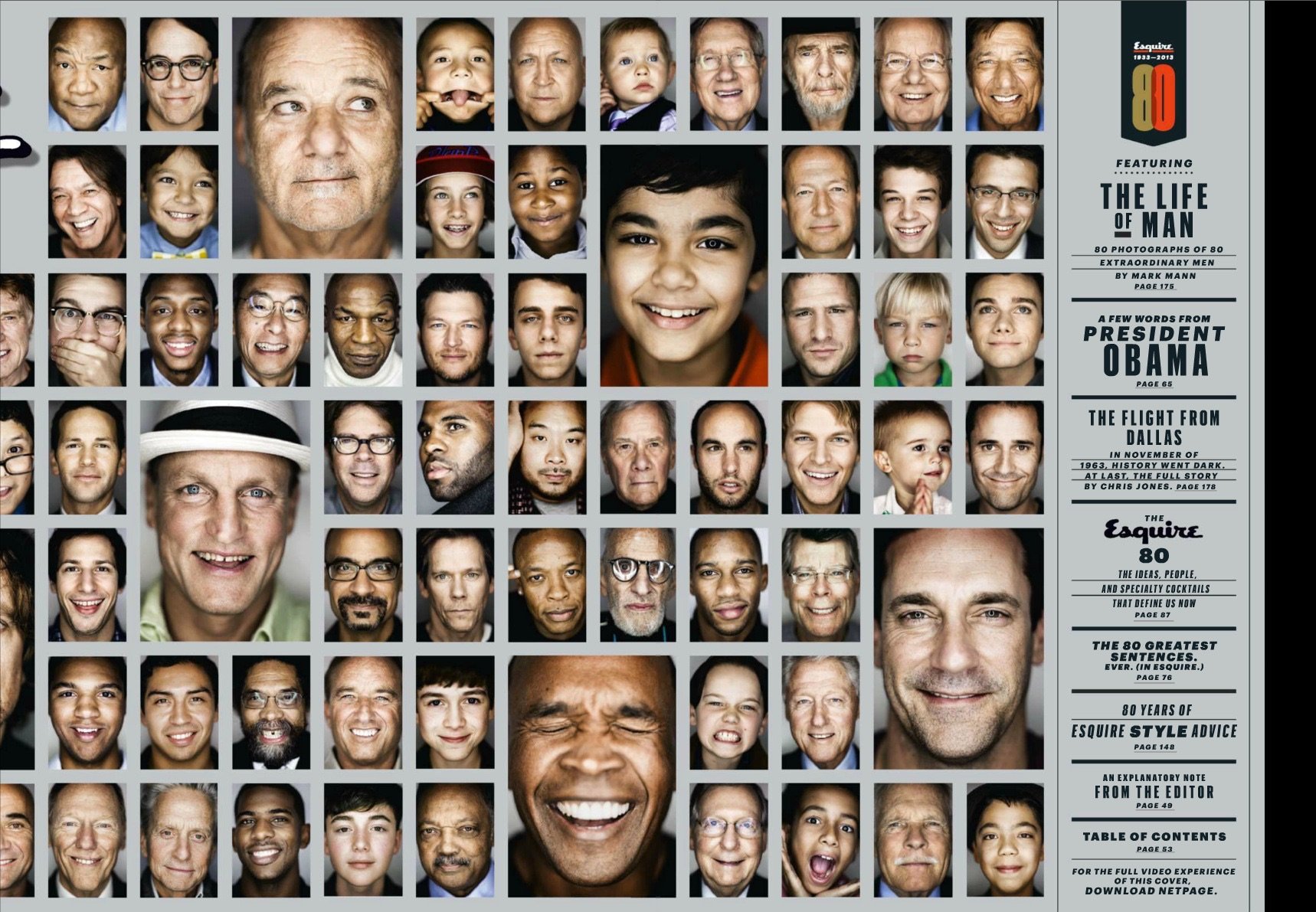
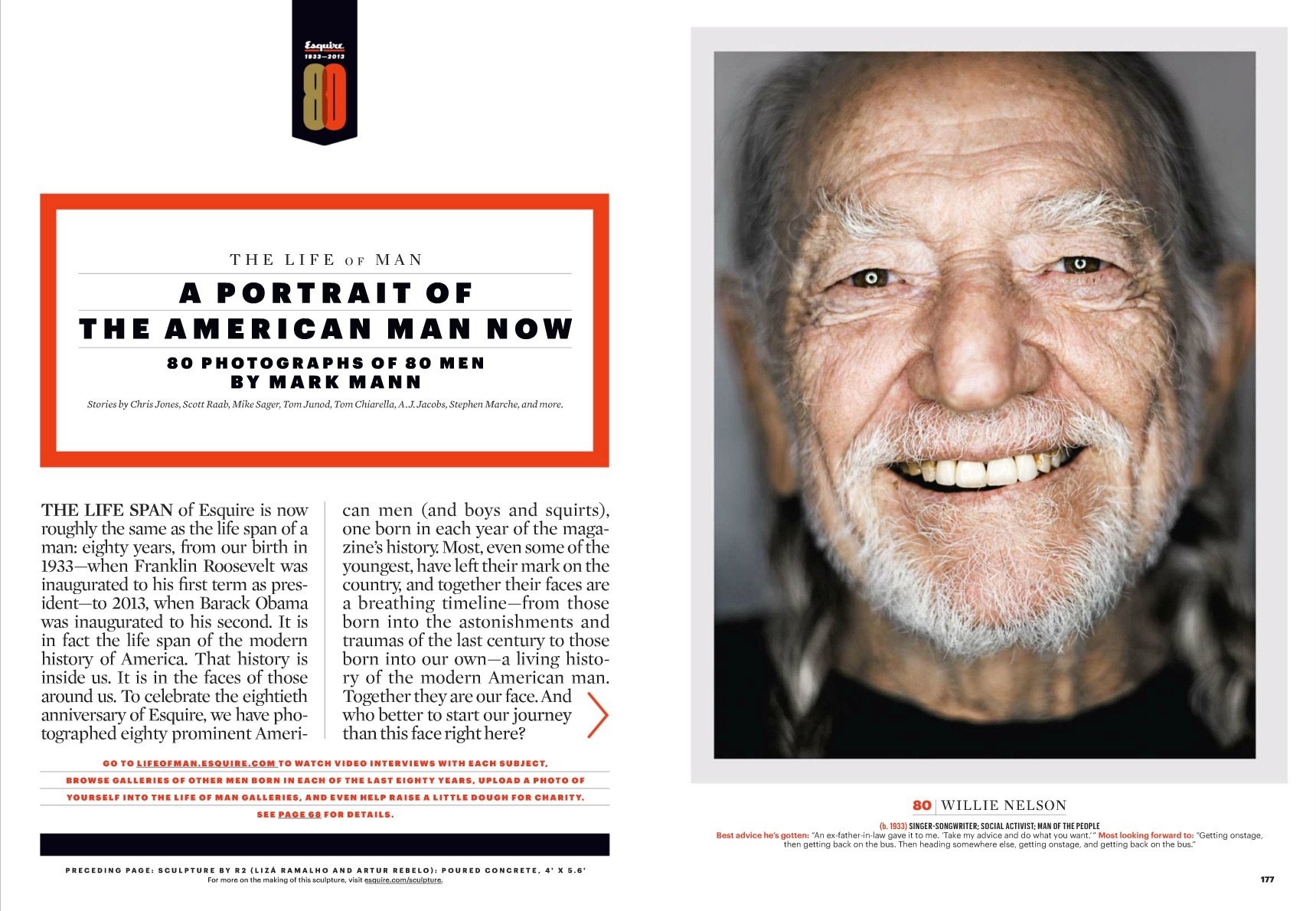


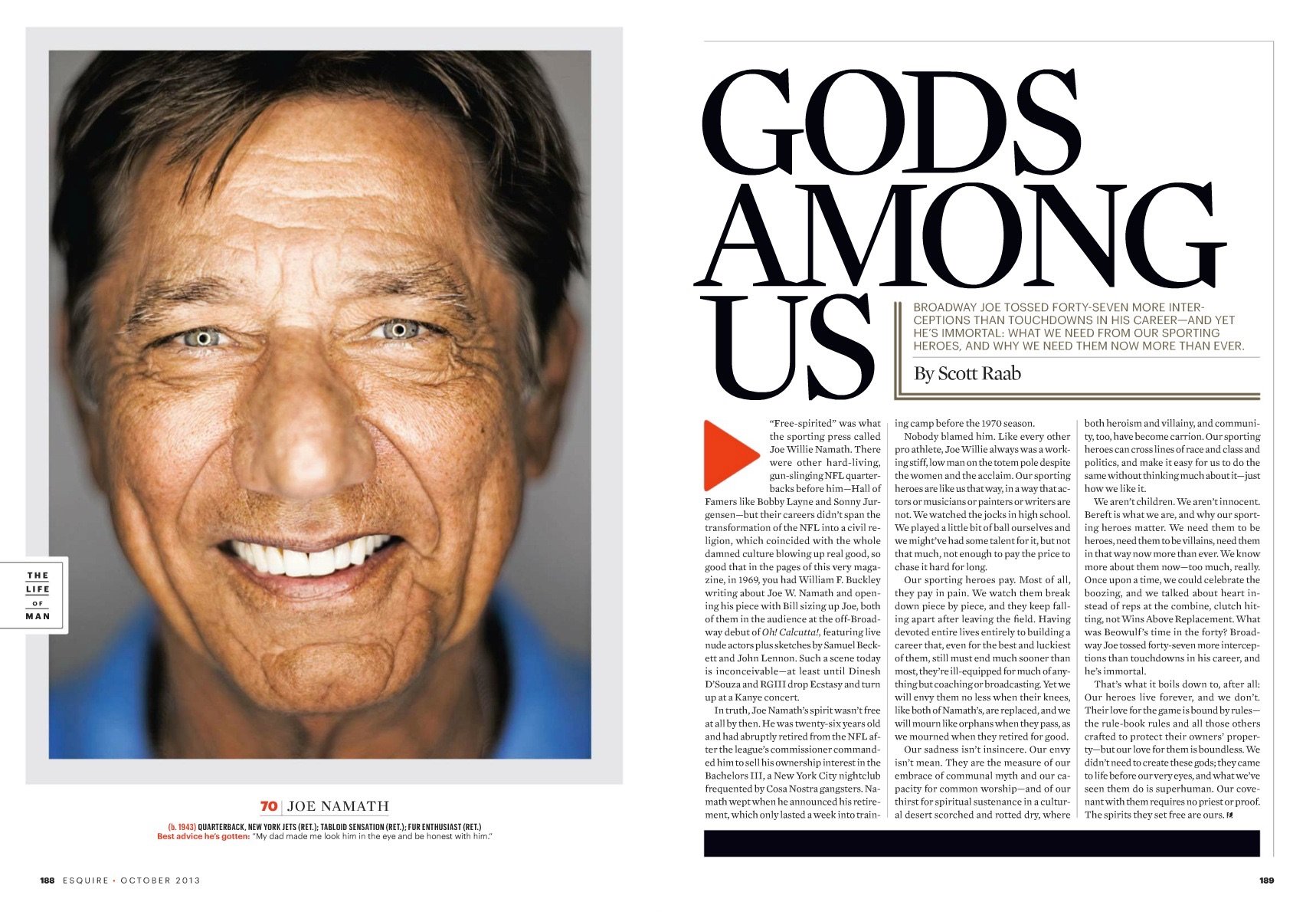
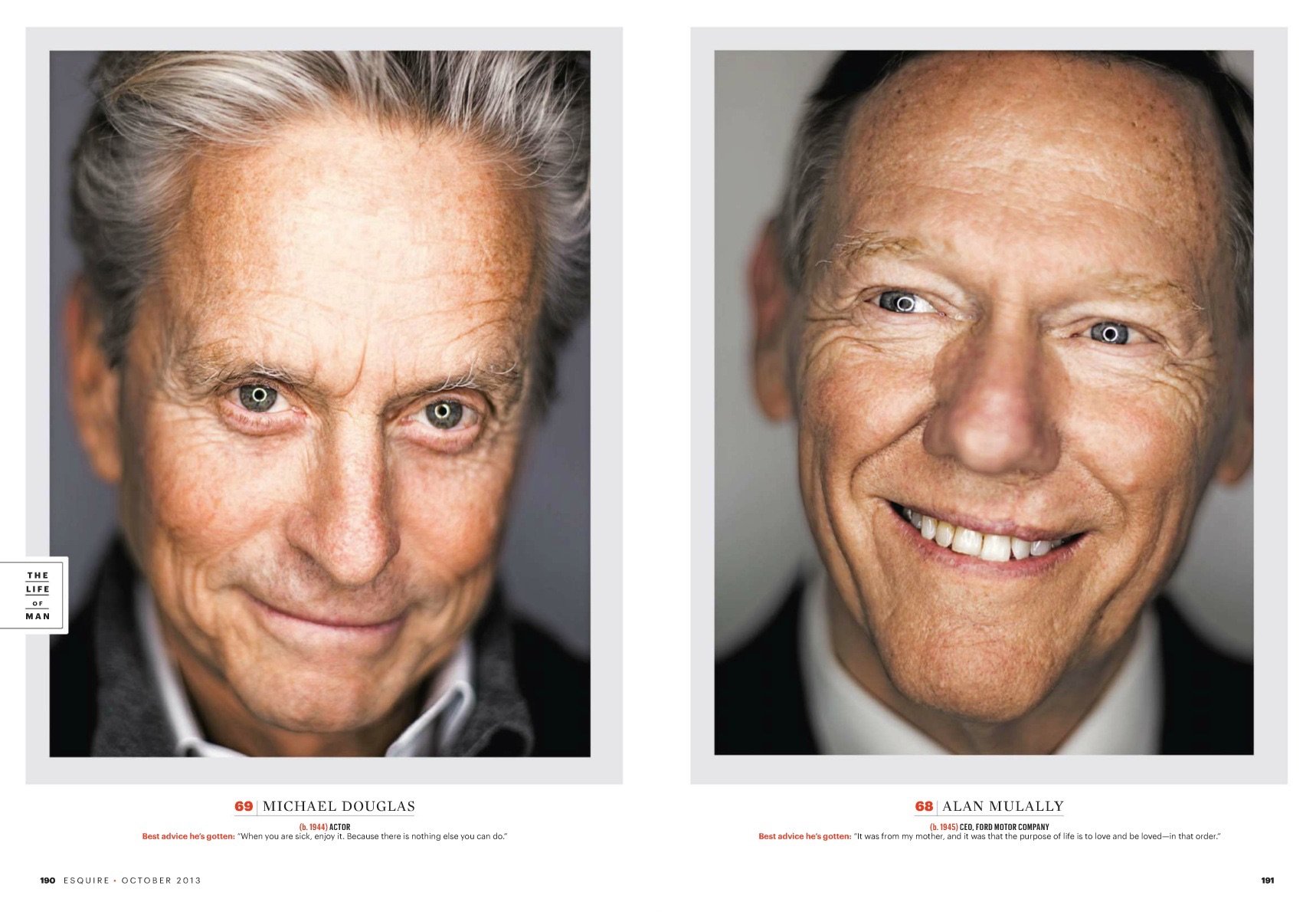
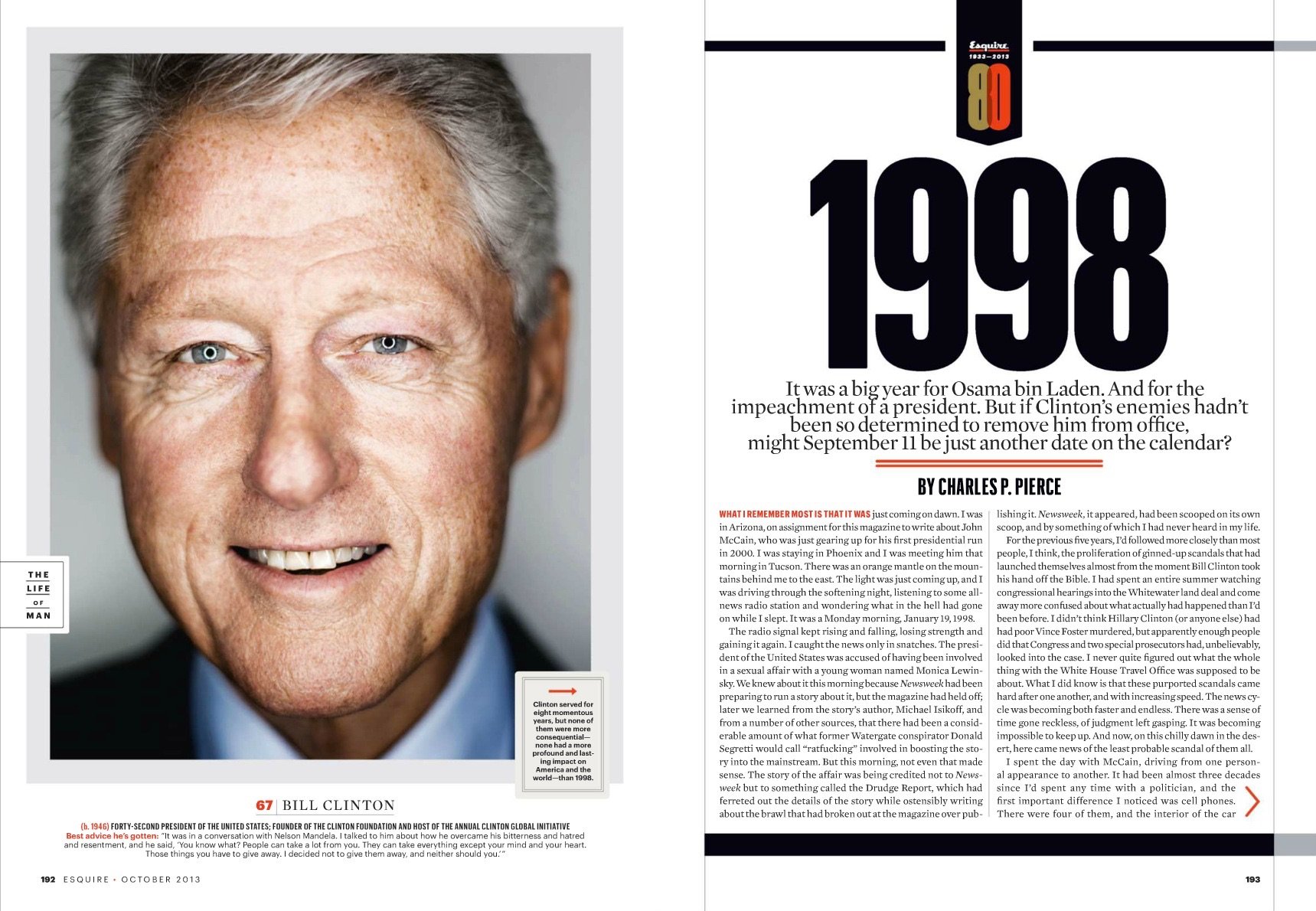
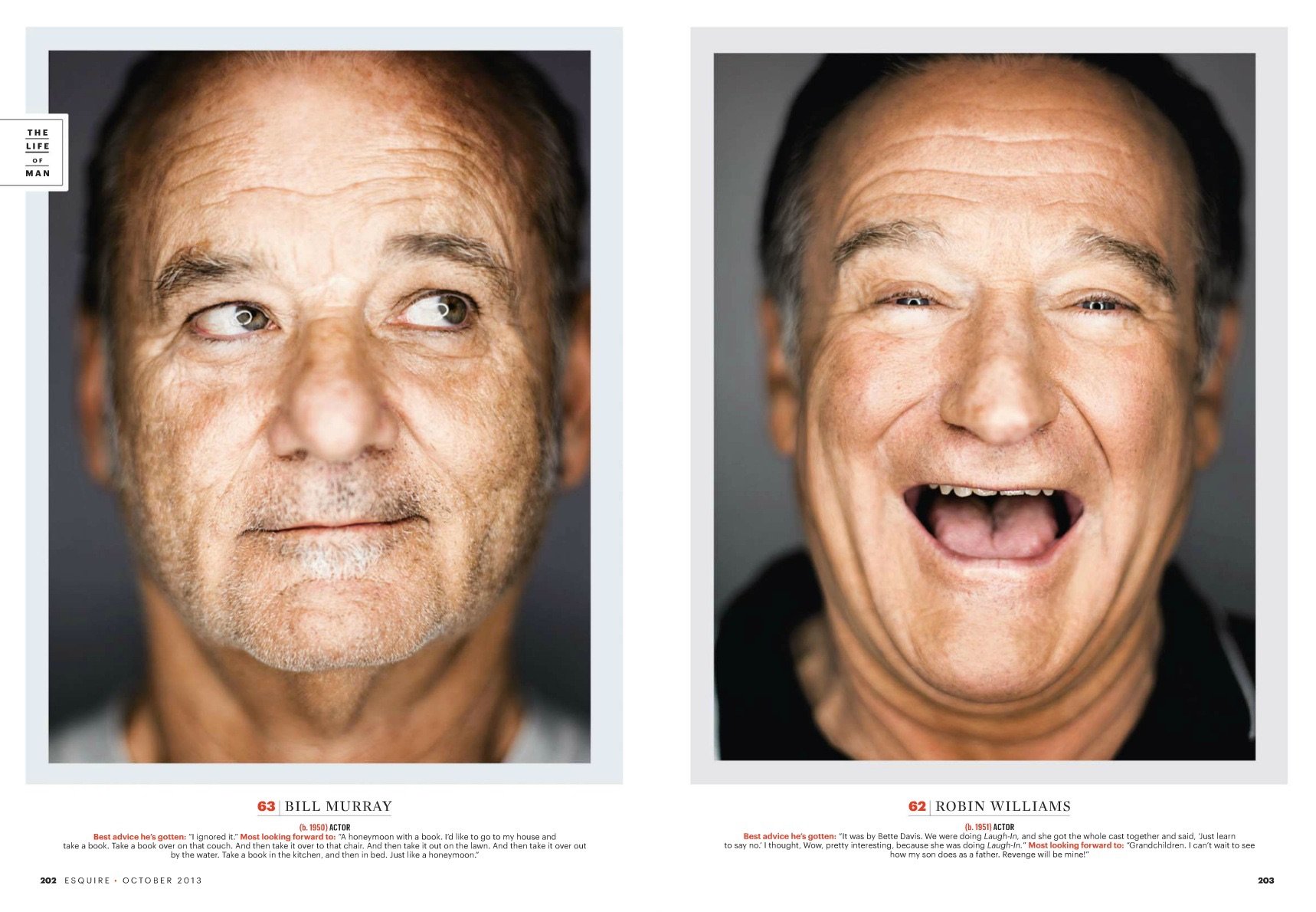
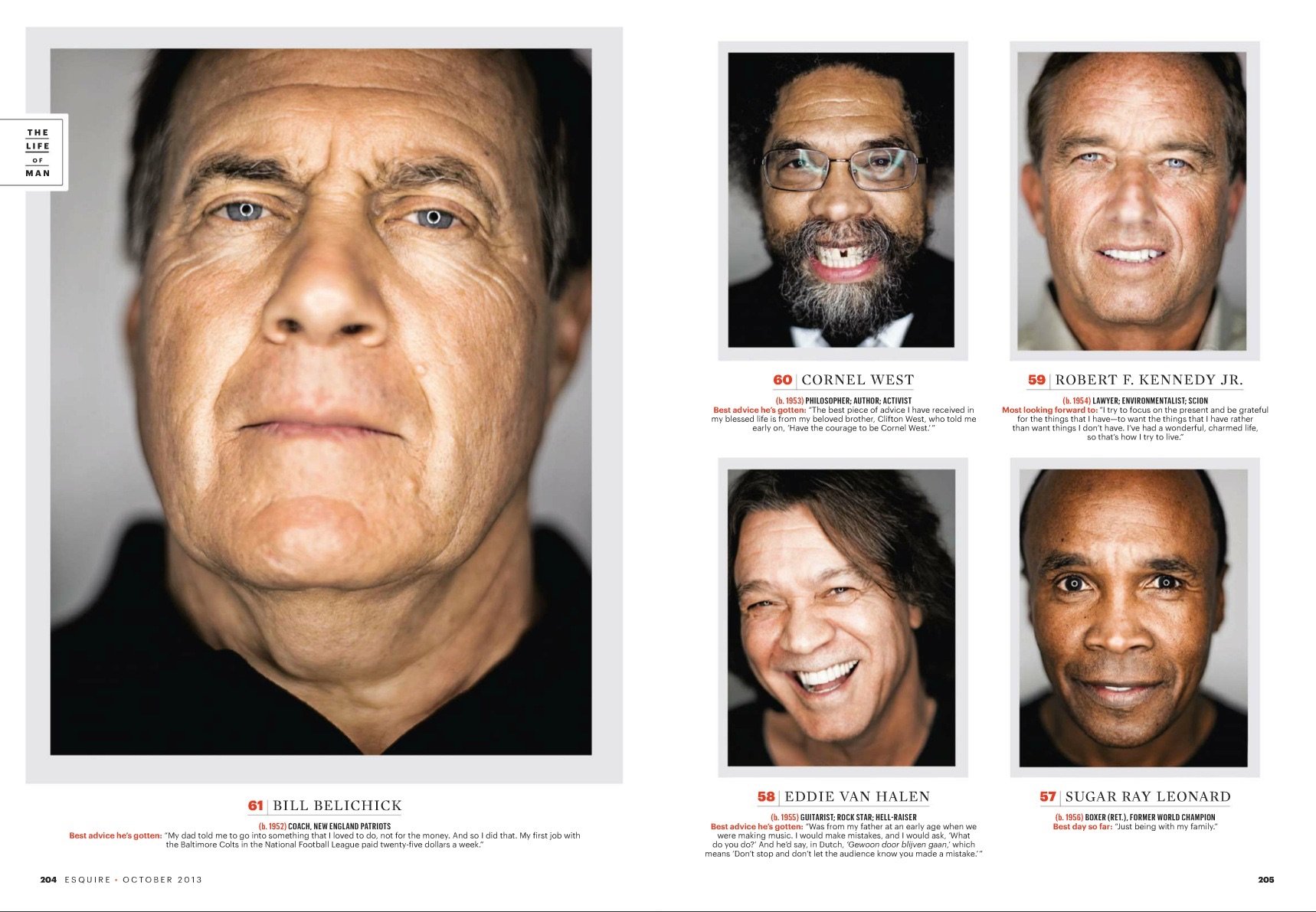
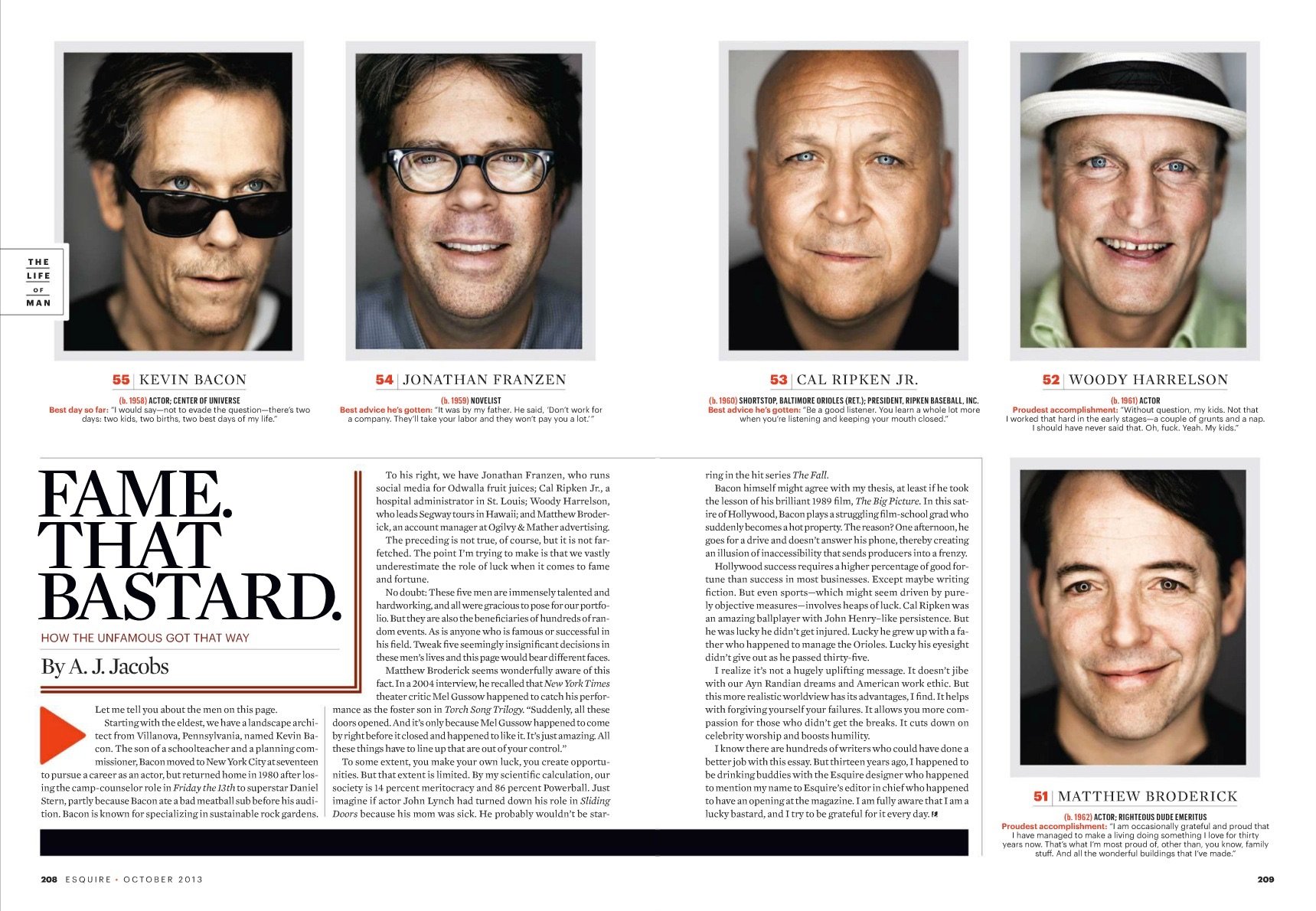
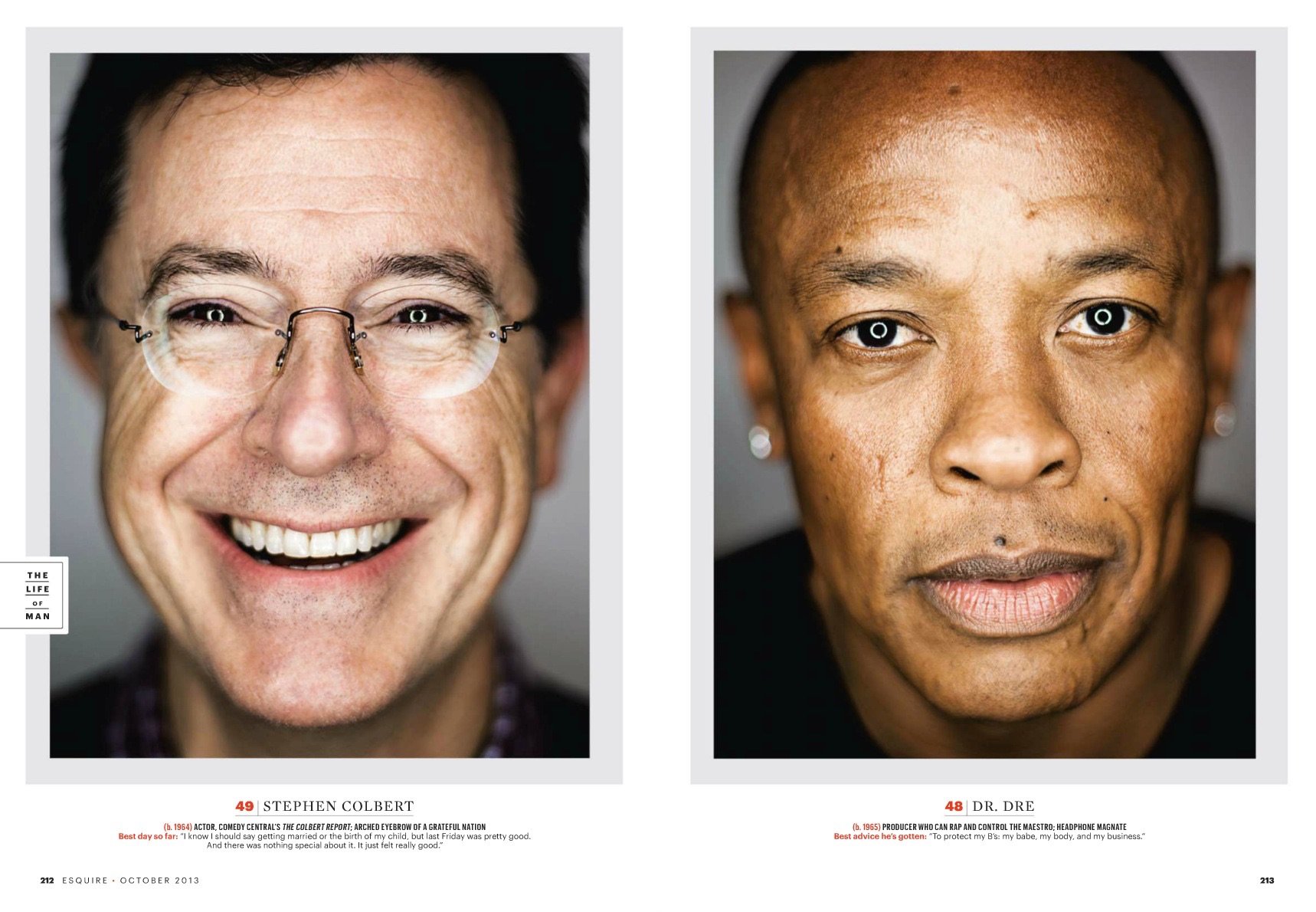
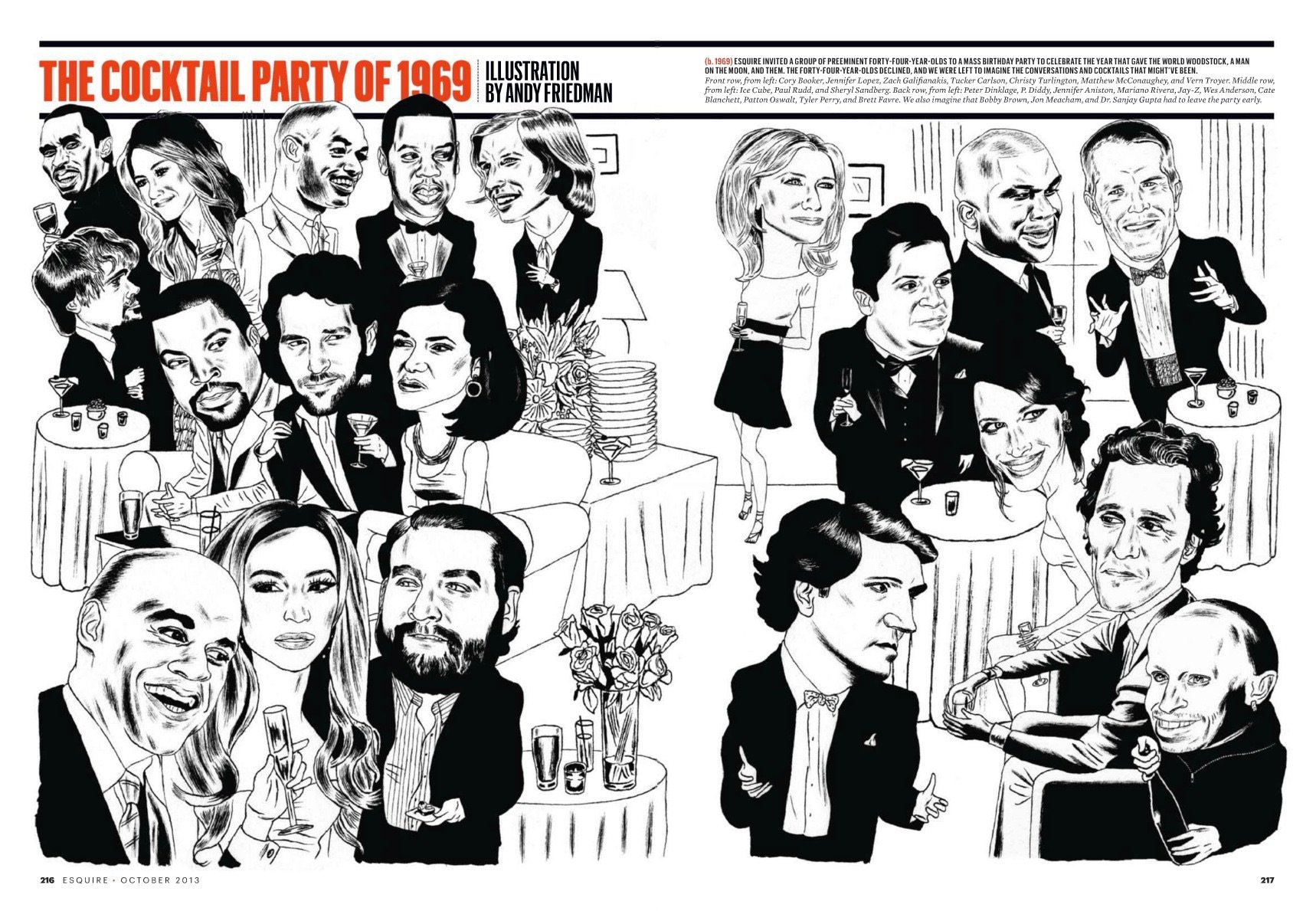
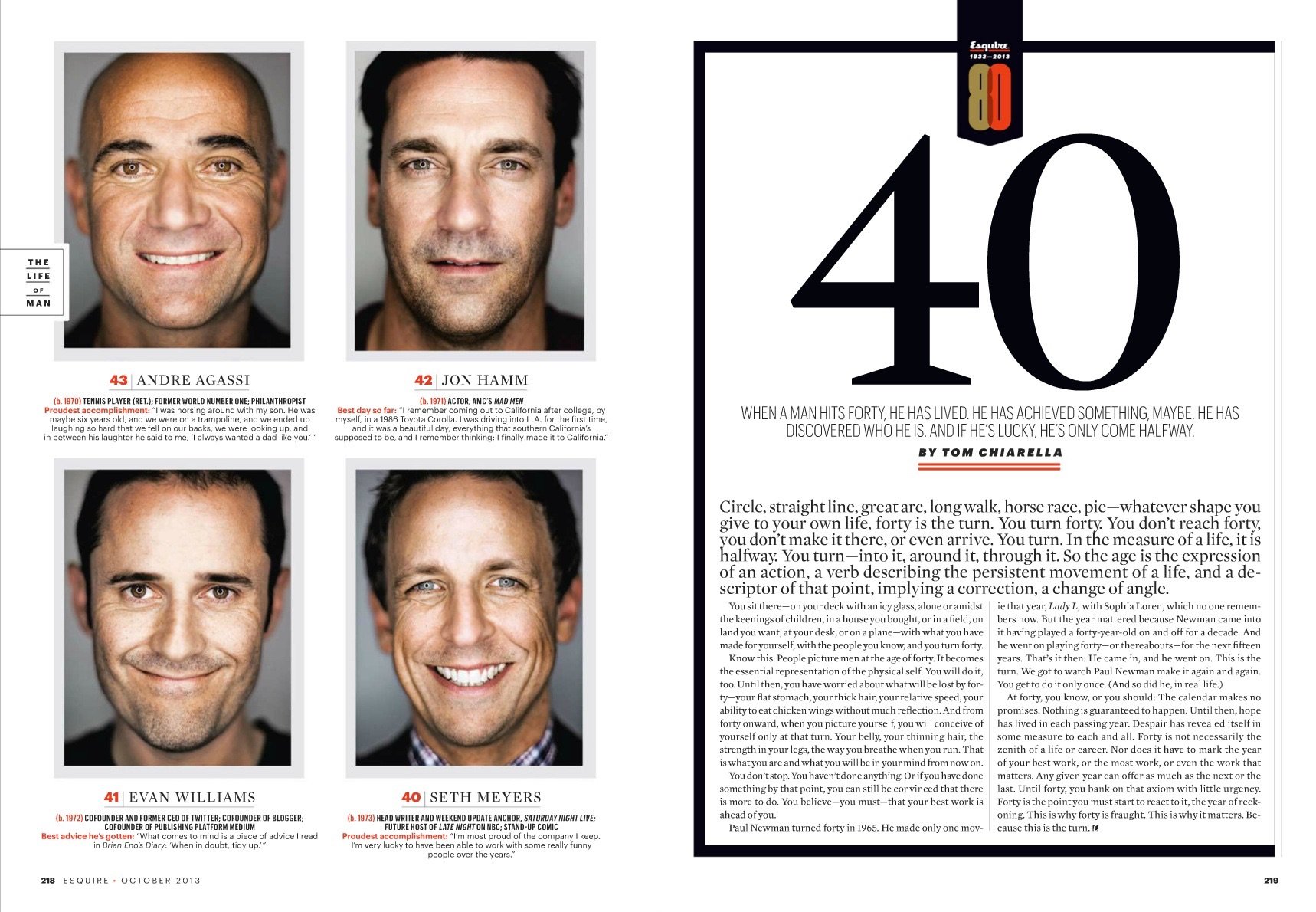
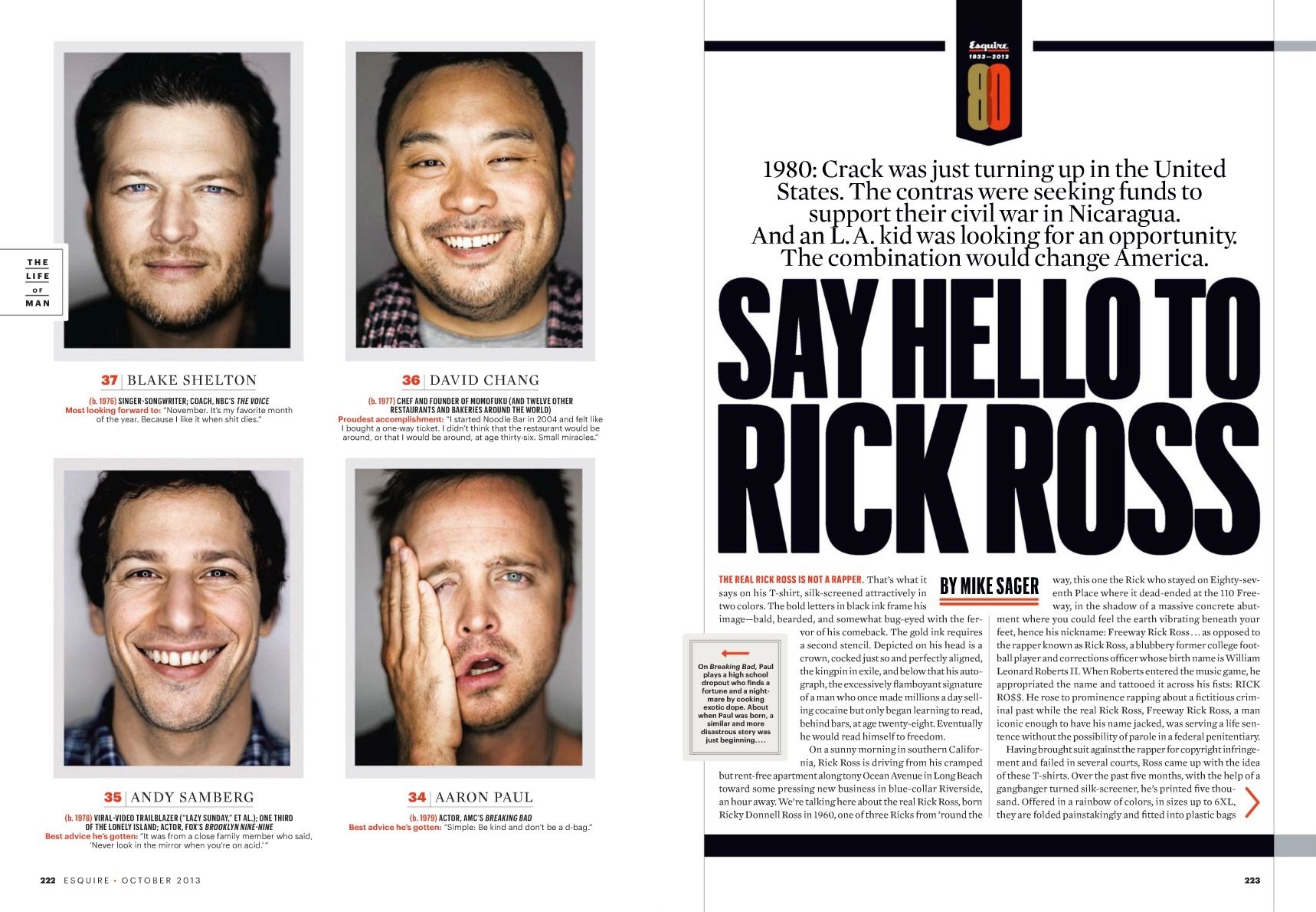
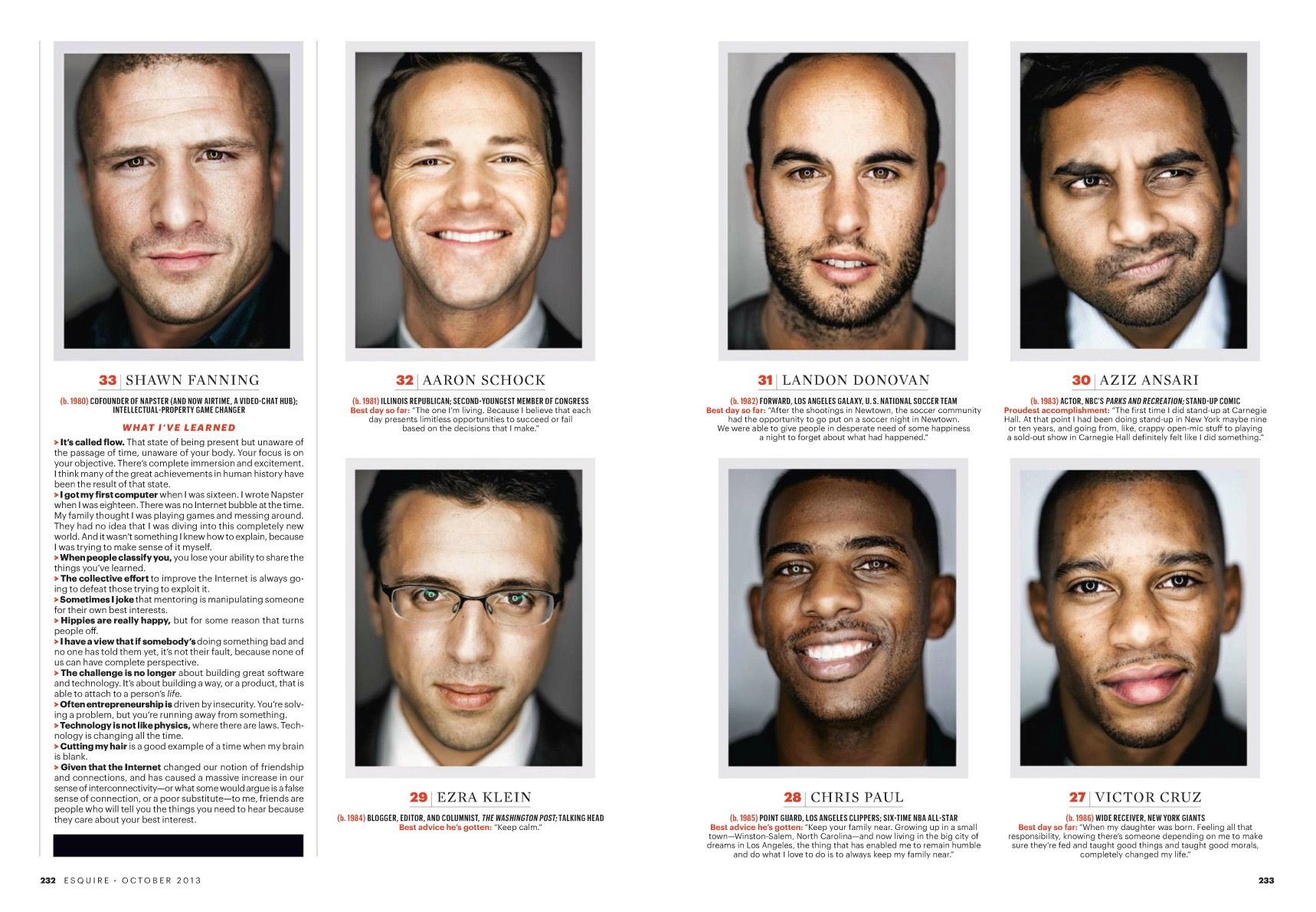
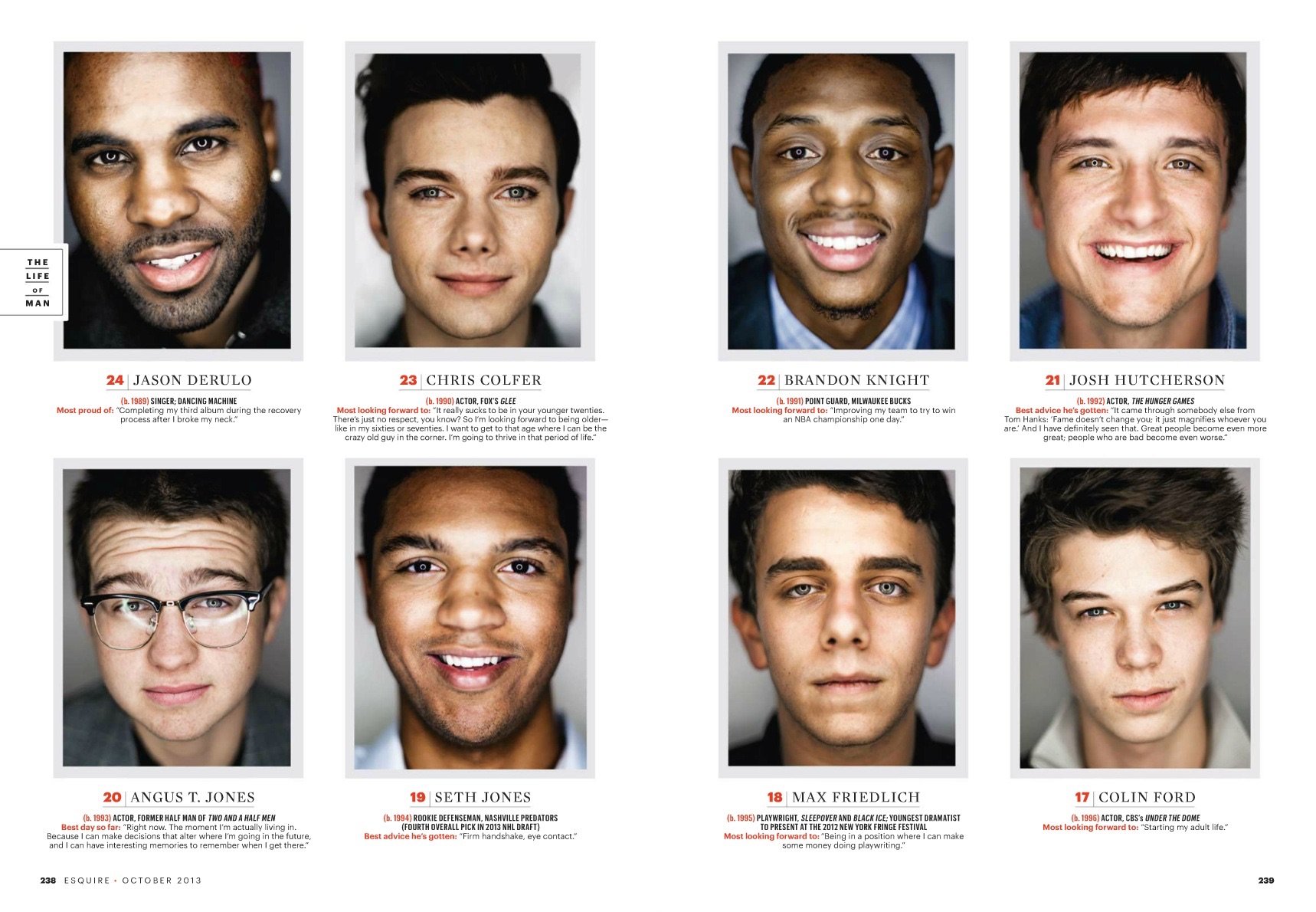
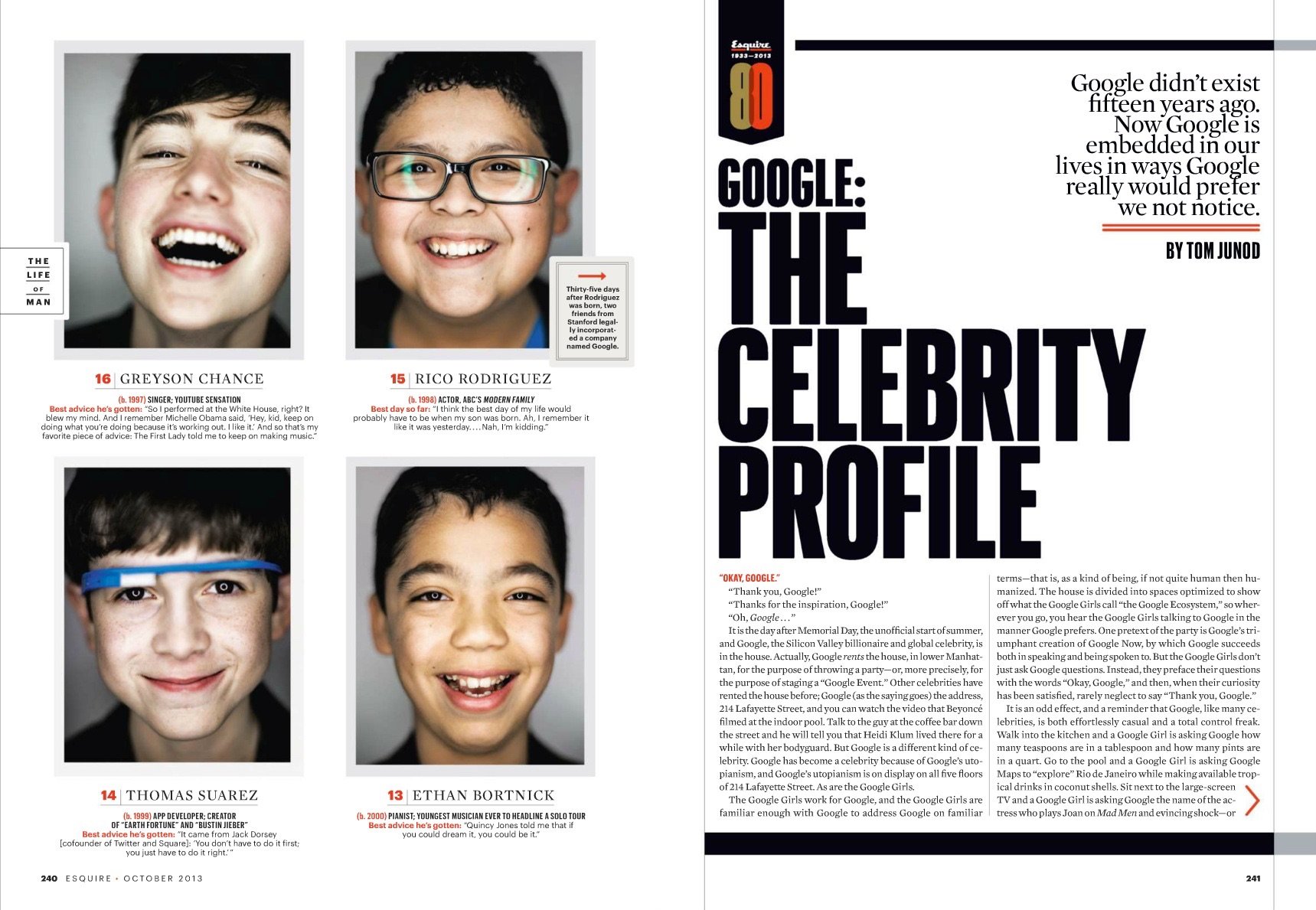
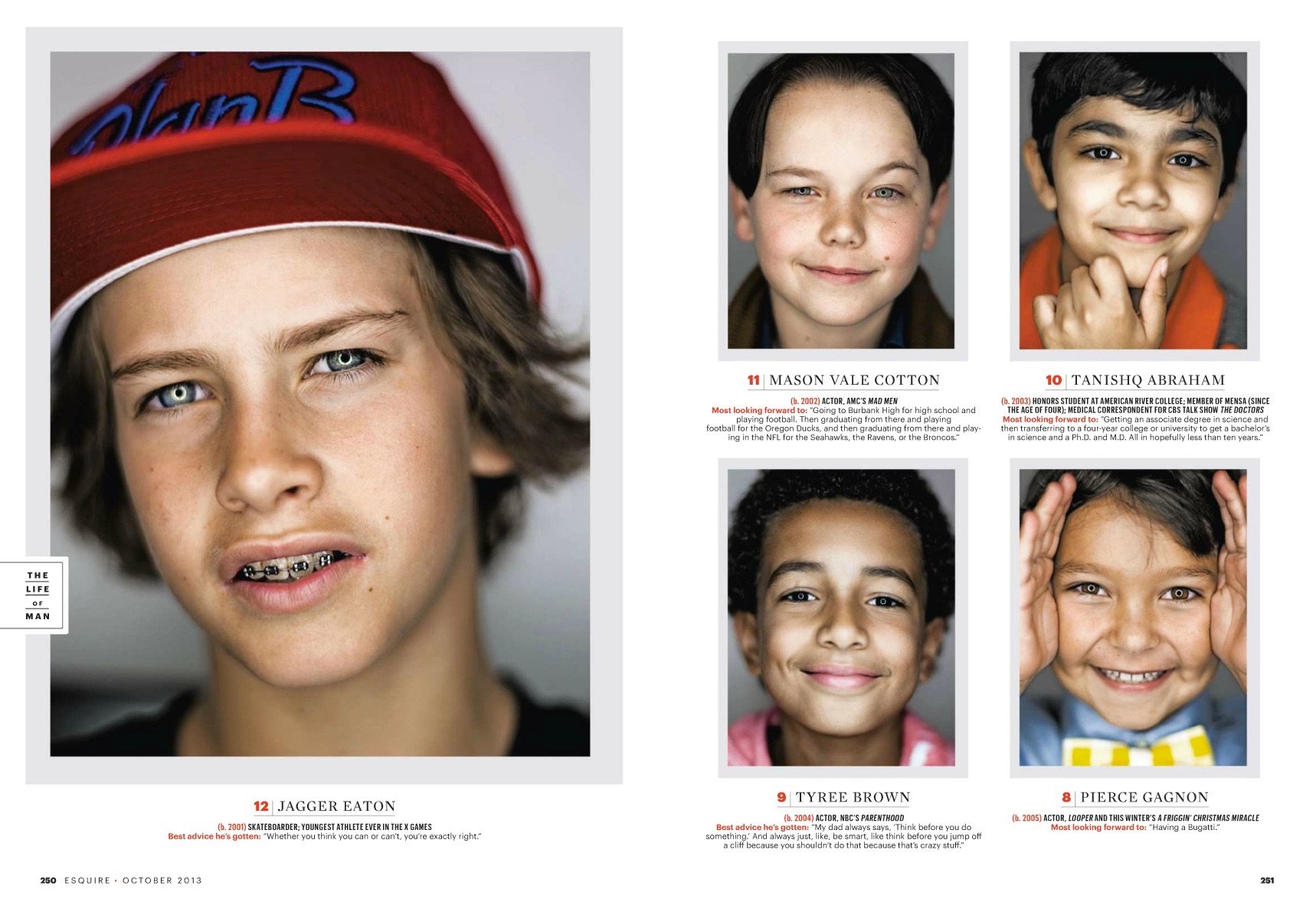
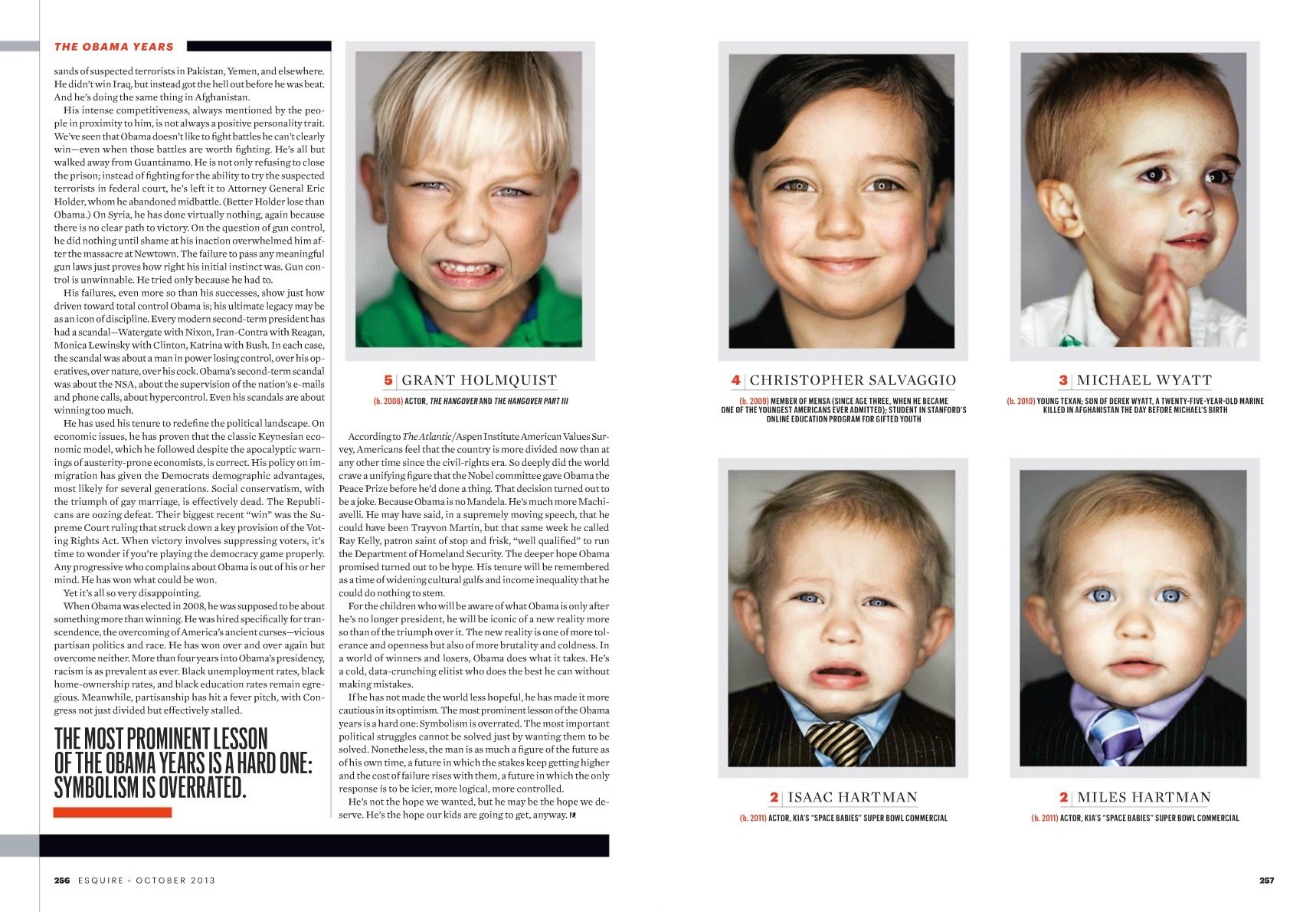

A 2013 special 80th anniversary issue themed “The State of the American Man,” featured a man (or boy) at every age between newborn and 80 (Willie Nelson).
Sean Plottner: Let’s just change the pace a little bit, and I’m going to …
David Granger: … We’re going to play a slow song?
Sean Plottner: Yeah. We’re going to slow dance to a little Bread. Actually, we’re going to pick it up a little bit. I’ll say something and then you just tell us the first thing that comes to mind and you can elaborate.
David Granger: That was fraught baby. That was fraught. It was one of those things that people associated with Esquire. They hadn’t read it since, like, 1968, and we tried to revive it and make it relevant, but this was like when John Stewart was coming on the air and there was political satire every night. And so Esquire had done this annual issue where they did fake headlines and then the stories that went with it, and the real news stories that occasioned those fake headlines.
And it was funny in its day. And we tried so hard to make it relevant and failed every time, including, like, Dave Eggers edited it in the one year that he worked at Esquire. We hired Jay Lovinger, who’s a legend from Time Inc.—but mostly from John A. Walsh—to come in one year. And we tried everything. It just didn’t work. So we killed it. And we killed it right after 9/11. It just just didn’t seem like it was in sync with the times anymore. And I got a bunch of nasty letters from people who, as I said, hadn’t read it since 1968.
Sean Plottner: Eggers had done it once. I’m going to have to look that one up. “Sexiest Woman Alive.”
David Granger: Scarlett Johansson.
When we put women on the cover, we always wanted to give the impression that the women enjoyed the experience, and give our readers that, rather than doing the thing that men’s magazines—that it’s hard not to do, which is objectify. And so one year we did, over six months, we gave visual clues to who the Sexiest Woman Alive that year was.
You couldn’t see who it was, but it was like in one, she was in her trailer home and on the floor in front of the open refrigerator, and the place was just a mess. All of them were shot in this trailer home in Appalachia somewhere. And in one, she was, like, shaving her legs in the sink. And it just looked like the most down-on-her-luck human being in the world. And it was Scarlett, who played all these roles for us and spent, like, three days shooting this thing just to do this long, slow reveal of who the Sexiest Woman Alive was. It was tons of fun.
Sean Plottner: “Lad mags.”
David Granger: Yeah. When I got to Esquire, that was when the “Lad Mag” thing was happening. I can’t even remember the names of them anymore. Ugh. God.
Sean Plottner: FHM. Maxim.
David Granger: Maxim. Maxim. Maxim. Maxim. Maxim. And that was one of the things that, when I talked about second-guessing earlier—all the circulation people, all the ad sales people—that was the thing that they most second-guessed me about. It was like, “Maxim’s successful. FHM’s successful. Why aren’t you guys more like Maxim?” You know?
Sean Plottner: Yeah. They’re putting Mr. Rogers on the cover. Sure.
David Granger: Yeah. I was at a cocktail party, speaking of Mr. Rogers, with Jann Wenner once, and I was complaining to him about newsstand sales and he was commiserating with me until he looked at me and he said, “Wait a second. You’re the guy who put Mr. Rogers on the cover, aren’t you?” He stopped commiserating with me right then.
Sean Plottner: Were the Lad mags competition for Esquire?
David Granger: Yes. They were competition for readers and competition for advertisers. And I think one of the reasons that Maxim succeeded was because men’s magazines had stopped giving men advice. And even though the advice in Maxim was mostly bad advice, it was advice.
And so I think men’s magazines had abdicated their role of offering guidance and that was one of the things that I worked really hard with my staff to try to do. We had this “Martha Stewart Moment” once when I was driving to tennis with a friend of mine and it was in my first couple years at Esquire and he goes, “How come there’s not a Martha Stewart for men?”
And that day I went to the library and I found the last three years of Martha, and I read it. The next morning I had an emergency meeting, I had the staff come in and I was like, “You guys need to read Martha Stewart.”
And they’re like, “What?”
And I was like, “No, no, you’ve got to read it. This magazine’s amazing because this is what Martha’s message is to her readers: I love you. I love your life. And if you follow my advice, your life is going to be better.”
And I was like, “We’ve got to do some of that!”
It was one of those moments where I was like, “Okay, it’s getting a little clearer what I’m supposed to be doing here.”
Sean Plottner: Frank DeFord. The editor at The National.
David Granger: Okay, two things. First, one of the three greatest sports writers of all time. And one of the great writers of all time. Second, way too nice a guy to be the editor-in-chief of a daily national newspaper. Frank was such a nice man.
You know, you got the nice letters from him, in purple ink, and all that kind stuff. He was just a great man. But that led him to say ‘yes’ to everybody. Even when there were pitch battles at The National—especially the ones I saw between the news side and the magazine side—Frank just said ‘yes’ to everybody. So, I love the guy. Just too nice a guy to be an effective editor-in-chief.
“The big stuff is hard in its own way, but it’s the little things that people are going to remember—or they’re going to enjoy—and it establishes not just a voice, but a whole environment of entertainment.”
Sean Plottner: Art Cooper, editor at GQ.
David Granger: Okay, here’s how lunch was with Art: Every once in a while, like two times a year, I’d get invited to lunch with Art. You had to be at the Four Seasons at 12:30 sharp. The second you sat down, vodka martinis, ice cold, are on the table. Art’s got an agenda for every lunch. He had an agenda. He’d usually write it out. He planned his day around lunch. He’d sit there in the morning planning what he was going to be talking about at lunch.
So vodka martinis with the first course, a bottle of Chalone chardonnay with the second course, a bottle of some red that was “Julian [Niccolini]’s choice.” As soon as you finish, Art’s like, “We’re heading to the bar,” because, after a while, they wouldn’t let him smoke at the tables anymore. You could still smoke at the bar. Light up a cigarette, have a sambuca.
And, at, like, three o’clock you’d get back to the office and just hammered. No choice but to put your head down and go to sleep for an hour.
Sean Plottner: Okay. How about art directors, in general?
David Granger: It’s difficult to generalize about art directors. I think it’s rare when there’s a perfect meshing of editor-in-chief and art director, and they’re equally important to the success of the magazine.
Many art directors have their own ideas about, especially magazine design, that may or may not be the best thing for the success of that magazine. But when an editor and an art director work beautifully together, as I did last 11 years at Esquire with David Curcurito, it’s freaking magic.
You’re just like dependent on each other. You make each other so much better. [That was] the greatest creative collaboration of my life. And that’s the potential of the editor/design director relationship.
Sean Plottner: Great. A couple more. A quote of yours: “The spread is one of the great, maybe lost, art forms of all time.” The spread. The magazine spread.
David Granger: Yeah. I believe that there are many things that the internet just can’t do—like almost everything. But the design possibilities and the expressive possibilities of a two-page spread in a magazine are just limitless. You can do anything on two pages of a magazine.
I mean, you just, you take all the things that a magazine is made of, paper, ink, photos, words, ideas, design, and you just let them go crazy on two pages of a magazine and almost anything is possible. And there’s never been anything like that in any other medium.
Books don’t do it. There’s nothing like it on the internet, no matter how much they try to be interesting design-wise. Everything scrolls, but there’s never that work of art that’s also part of a living medium. There’s an urgency to magazines. They’re timely. And you create a timely work of art on two pages. Nothing else can do that.
Sean Plottner: There isn’t. Viewing a spread, the gaze of the eye is so different than looking at something online. The creation of a spread is so different than anything you would create online. The anticipation, or expectation, of turning a page—you don’t get that online. And I think there’s a real psychology that makes it interesting. And your notion of, like, front of the book stuff, making sure a page does more than one thing. Jeez, a spread, like you said, can do so many things.
Okay. The phrase “content creation.”
David Granger: Well, “content” is a word that I try not to use. I think it’s the dirtiest word in the English language, especially starting in the mid-aughts of this century.
It’s just like, “Content.” It’s like the great leveler. It’s like anything that fills up the space is of equal value. That’s what the word “content” means. It’s like, “We’re going to get some content and put it on this website.” What the fuck? You have, like, you have articles. You have photos. You have great pieces of writing. It’s not “content.” It’s something that somebody slaves over.
But that’s the mindset. It turns out that the medium is the message, right? If you create something that’s designed to be read quickly, whether it’s on a webpage, or social media, or whatever, it’s going to suck more than something that is designed to move somebody and make them rethink the foundations of their life.
And a magazine has the potential to create a work of art, a timely work of art, that’ll have a profound effect on somebody.
Sean Plottner: Okay. Awards. You’ve got a few.
David Granger: Yeah. They’re nice. They make you feel good. I have this Polaroid of myself sitting in an abandoned folding chair on Eighth Avenue holding one of those National Magazine Award statues.
That’s one of my favorite photos. We had 17. They were on display in the Esquire offices, and on my last day there I stole one just so I could have one. So I guess they mean something to me.
Sean Plottner: How many of those Ellies can you fit into one briefcase?
David Granger: I just took one. I don’t know. I don’t even remember what I took it out in. But you can’t plan to win awards. You just try to do really good things and then every once in a while it happens.
Sean Plottner: Okay. The slogan “Man at His Best.”
David Granger: Yeah. So for a long time, Esquire, its slogan was “The Magazine for Men” for most of its life, like, up into the late seventies. And then when your boys, Whittle and Moffitt, took it over, they changed it to Man at His Best. And there was a reason for that.
As I said before, Phil Moffitt, he had a mission in Esquire and he was well ahead of his time in that he was really into yoga back in the seventies and eighties, and he believed in the possibility of personal improvement and that was one of his main goals for the magazine.
Kind of like my Martha Stewart moment, he wanted to help people improve their lives and he changed the slogan of the magazine to Man at His Best. And when I got to Esquire, I think they’d gone back to The Magazine for Men, and I know that they’d scrapped Man at His Best. And as soon as I could, I changed it back to Man at His Best in homage to Moffitt, but also because I wanted it to express part of our intention for the magazine.
Sean Plottner: I guess I’d be remiss if I didn’t ask at least one fashion question, and I’m not one to delve into fashion, but you know, I think you’ve got some experience with it. What’s the best men’s fashion tip you learned while you were at Esquire?
David Granger: That’s a hard one because, when I was at GQ, Tom Junod wrote this piece called “My Father’s Fashion Tips.” His father thought he was Sinatra and he had very strict rules about fashion. And the piece was built around five of his father’s fashion tips. And the one that stands out to me the most is Always wear white to the face. It just shows off your face. Your face is your greatest asset.
Always wear white to the face. It’s like, “Put a spotlight on your face.” But almost equally relevant and true is another of Lou Junod’s fashion tips is, The turtleneck is the most flattering thing a man can wear. This is true.
I mean, in Esquire I learned a lot of the details, I learned a lot of the history, but I started being aware of what I wore when I was working at Sport magazine, I saw a picture of myself sitting in the dugout with Dave Parker, the great Reds slugger, and I was wearing, like, some shitty blue pants and a shitty checked short sleeve. And I realized, “Man, no wonder athletes hate sports writers!” You know? And from that moment on, I decided that I was going to dress at least as well as the people I planned to meet that day.
Clooney on the cover? That doesn’t suck. The superstar actor appeared on eight of Granger’s issues.
“Covers always suck. They suck and they suck and they suck until they don’t. At some point they stop sucking.”
Sean Plottner: Well, I’ve got to tell you, I’m very glad you didn’t show up today with a tie and a jacket on. Okay, thank you. Let’s move into really my final section here, the section of Today and the Future. What’s wrong with the magazine business today?
David Granger: What’s wrong is that everybody lost faith in the vitality and vibrancy and validity of the medium. And that started with the magazine companies. You know, when everybody went running toward the inevitable payday that was the aggregation of content and gathering a huge audience and believing that advertising would flow if you just presented a large audience to the world. Everybody ran in that direction.
Hearst, Condé Nast, Time, Inc. They all abandoned their print products and started investing in digital because, of course, digital was the future. Even though there were already players who were going to kick their asses, who were dominating that space. It’s like, if you can’t win the game, play another game. And they abandoned the game that they were good at.
And so that filters down to everybody. When the business side is shaky, editors and writers are less likely to take chances, editorially, right? Because you do something that gives a fence to an advertiser or to readers, and you’re putting the viability of the business at risk. So that’s a big thing.
But then the rise of social media and the fact that everybody has a platform that has the potential to spread worldwide in an instant also makes editors and writers a little scared. It takes a lot to stand up to the mob when somebody decides that something one of your writers has written is offensive in one way or another, or racist, or sexist, or whatever.
And the ability to stand up to that sort of invisible mob is hard. And it causes a lot of people to play really safe. There are a lot of pressures on magazine editors and writers to play safe. It’s the same in most media. It takes a lot more courage to stand up for what you believe in, in the highest forms of expression now than it did when I was an editor-in-chief.
Sean Plottner: Well, you know, we’re on a podcast called Print is Dead. (Long Live Print!), and sometimes my thinking is, you know, “Geez, the magazine business is long gone.” But there are still some great magazines out there that are, first-and-foremost, print magazines. New York magazine is still excellent. The New Yorker. I think the new Sports Illustrated works. The Atlantic. On and on. They’re still there. They still come in my mailbox. Is there ever a chance we’re going to see more magazines? Or a revitalization of the industry?
David Granger: It’s hard for print to be as vital as it was because there’s not a robust advertising base. And for better or worse, mostly better a long time ago, and worse more recently, advertising was 85-90% of magazine’s revenues.
So advertising goes away and you don’t have the pages, you just don’t have the resources to do what could be done in the nineties and the early two thousands into the 20-teens. And, it’s just, it’s hard.
I love it when I see little magazines popping up. I got to help this magazine—Racquet, which is this high quality tennis magazine—I got to help them get started, and I’m amazed that they’ve been able to sustain it. But they sustain it not through the traditional magazine metrics of advertising and circulation. They mostly sustain it through doing events for advertising partners or for folks with a lot of dough.
And so that’s a little different. And it’s also a reason not to give offense. When you’re being sustained by your sponsors, it’s a little harder to do anything that’s really risky. There’s always going to be great magazines.
Every year I judge the City and Regional Magazine (CRMA) contest and there’s always really good, really surprising stuff. And a few years ago I went to one of their conventions, and there are just as many city regional magazines, I think, as there were 15 years ago!
I know a surprising number of writers, surprising to me because I’m ignorant, that the authors I’m working with, like, at least two or three of them right now are doing pieces for alumni magazines. And there’s a vibrancy there. And you guys actually pay enough money that writers want to spend some time doing that. Which is often hard to do with commercial magazines to make a living.
So yeah, there’s always going to be room for magazines to thrive. They’re just not as big a force as they once were. And it’ll be very hard to make them that.
Legendary comic artist Chris Ware’s version of “What I’ve Learned”
“The design possibilities and the expressive possibilities of a two-page spread in a magazine are just limitless. You can do anything on two pages of a magazine.”
Sean Plottner: That’s very interesting what you say about alumni magazines. As a longtime alumni magazine editor, it is a different animal than the consumer magazine world. And I think that the talent that’s available to those of us running alumni magazines is greater now because there’s less consumer magazines for these people to go and work at. And we do have some money. And I think things have gotten better.
What is really great in the research that we put out to our readers is they’re not saying, “We don’t want print. We want to read it online.” They want their print magazine. And it’s almost a luxury these days. And again, that’s conflated with a lot of emotions about their school and blah, blah, blah, blah, blah. But the love of the print magazine—it’s there. And it’s cool to see.
David Granger: Yeah, it is there. But I remember doing focus groups and it’s there to a level. And I remember watching readers go, “Man, I love Esquire.” And they would know particular writers, and they would remember specific pieces, and they would talk about the things they love in every issue. And then at the end of the thing, the guy would say, “So are you going to resubscribe?”
And he’d go, “Uh, I don’t know.”
When it comes to going into your pocket for $15 or whatever it is, that’s not that much money, but there’s some weird disconnect there.
But you’re right about people’s love for print. I see that in the book business. All the growth in books over the last 10 years—it’s exploded in the last two and a half—is in hardcover sales! Audio books are growing slowly, eBooks have completely flattened out. Together they’re only like 12% of the book market. And hard covers are where all the growth is. And there’s something that people like about that.
Sean Plottner: Yeah. Well, I understand that. I love having a book in my hands, and eBooks aren’t the same. Tell us what you are doing now, speaking of “long live print.”
David Granger: Yeah. I work in the book biz. I’m a literary agent. I’ve been doing that for six years, and it’s been good. It’s been good. The thing that struck me after getting tossed out of the magazine business, was when I started having meetings with book people, there was, especially at the executive levels, there was, like, a genuine optimism and I hadn’t felt that in the executive levels of the Hearst Corporation for a long time, with regard to magazines.
And so it was refreshing that top editors and top executives could see that they were in a growing business. It’s not a huge business, but it was a big business. And growing. And so there’s optimism and there’s willingness to make investments. They’re running scared in certain ways too, but it’s a business where its leaders know there’s an upside and that was refreshing for me as somebody who wants to catalyze creativity.
Granger’s last few issues at Esquire
Sean Plottner: Can you share a project you worked on or are working on now?
David Granger: Yeah. I could bore you to tears for, like, several minutes.
Sean Plottner: What’s the most exciting project you’ve worked on since you left magazines?
David Granger: Can I give you two? Okay. The first one, that was probably the most fun, and it made me feel like I was part of the cultural conversation, was we got chosen to represent this guy, Andrew McCabe, who was the deputy director of the FBI.
And then Trump savaged him and his wife and fired him. And I got chosen to help represent him. And as soon as we got the gig and won the beauty contest, I flew to DC and spent two days with Andy in his living room and just interviewed him and started writing the proposal, and then we ended up turning it over to a writing team.
But we did the book fast, we got it out in a timely manner, and it hit number one on The New York Times bestseller list, which is tons of fun.
The thing that I’m most excited about right now is that three of my writers have written a novel that is the funniest, most intentionally offense-giving piece of writing I’ve read in a very long time.
It comes out November 8th. I don’t know what else is happening on November 8th. There may be, like, some election going on or something. But I think the event of the day is that The Lemon—it’s called The Lemon by S.E. Boyd—is publishing on November 8th. And it takes shots at everybody who deserves to have shots taken at it.
It’s set in the world of high-end cuisine, but goes quickly into the cynical world of big-time media and the fame industry, the celebrity industry, and it’s just, it’s hilarious. You zip right through it and it’s fantastic and it’s made, like, “Fifteen Books You Have to Read This Fall” lists, and gotten amazing advanced reviews.
I just hope when it comes out, the reviews are as fantastic as they’ve been so far. But anyway, it was great working with three authors and creating a pseudonymous new author, and creating a book that I think is going to be very successful: The Lemon by S.E. Boyd.
Two of Granger’s latest book projects
Sean Plottner: Got it. You sound very engaged and into what you’re still doing.
David Granger: It’s fun, man.
Sean Plottner: Okay, we at Print is Dead. (Long Live Print!) have learned that when Steve Jobs died, he left a gazillion dollars that he wanted David Granger to use to create a magazine. Apparently you were on his radar screen, we have no idea. Maybe it was that digital cover you did. Anyways…
David Granger: No. He blackballed us from ever getting advertising. We were blackballed for 12 years, during Apple’s biggest growth spurt, from ever getting a page of Apple advertising.
Sean Plottner: He never gave Esquire credit for the fact that he knew turtleneck was the best way to go every day? Okay, so you got oodles of money to do a print magazine. What would you do?
David Granger: That's such a hard question. There was a time that I really wanted to do a magazine called Magasin.
Sean Plottner: Terrific title.
David Granger: It harkens back to the French word for department store, which I believe is magasin. And it’s just, like, it’s got a little bit of everything. But, kind of the best of everything.
And if it was stipulated that this money was to go to creating a magazine, I think I would create Magasin. And I know who I’d want to be my business partner in it, but I would need so much help at the digital and social aspects of making a print magazine successful that I’d be a little daunted. I have to find just the right person.
But yeah, I think I would create Magasin.
For more on David Granger, visit his website.
Back to the Interviews
The London Independent
First, there was the Slow Movement, which begat Slow Media, which begat Kinfolk, the Bible of Slow Living. And now, maybe, British designer Alex Hunting has begat Slow Design. Read on. (Slowly).
First, there was the Slow Movement, which begat Slow Media, which begat Kinfolk, the Bible of Slow Living. And now, maybe, British designer Alex Hunting has begat Slow Design. Read on. (Slowly).
—
THIS EPISODE IS MADE POSSIBLE WITH THE SUPPORT OF THE SOCIETY OF PUBLICATION DESIGNERS
For the past ten or so years, indie magazines have been booming. As digital media platforms relentlessly chase clicks and smartphones paralyze our focus, a host of fresh print publications are taking a slower and more measured approach.
Guided by the tenets of the “slow media” movement, this new breed of publishers focuses on correcting the pace of media creation and consumption in the digital age. They advocate for alternative ways of making and using media that are more intentional, longer lasting, better written and designed, more ethical—all delivered in a tactile, bespoke package.
In this episode, you’re going to encounter magazine brands you’ve never heard of: Avaunt, Flaneur, Mondial, Monocle, and Port—and, one of the great success stories of the indie boom, Kinfolk. Born in Portland, Oregon, in the early 20-teens with the tagline, “A Guide for Small Gatherings,” the magazine was often referred to, dismissively, as “Martha Stewart for millennials.”
But, in recent years, Kinfolk, like its millennial stans, has grown up. The mag moved its offices to Copenhagen. They created a clothing brand, licensed local editions in South Korea, China, Japan, and Russia, published a series of coffee table books, and, in the ultimate act of adulting, launched a magazine for “people with kids.”
But one of the best moves they made was hiring today’s guest, the incredibly talented British designer, Alex Hunting.
Intentional or not, Hunting is a practitioner of slow design. His instinct for space allocation and pacing eliminates those outdated, overwhelming TL;DR sections. His stunning magazine pages are subtle, spare, and expertly crafted. Perfect for indie magazines, which is good, because that’s pretty much all he does.
We’ll talk to Alex about why, at age 35, he’s so bullish on print, why his university experience didn’t go as planned, and how a pair of mentors literally changed his life.
And, if all of this bores you, well, there’s plenty of talk about houseplants.
Patrick Mitchell: Before we get into this, I have to ask, as an amateur horticulturist myself, I was reading an interview you did with Jeremy [Leslie] at magCulture, and I saw a photo of your studio from, I don’t know, five or six years ago, and there was a little jade plant on your desk and I just want to know, how’s that jade plant doing now?
Alex Hunting: Oh, I think, I think that’s toast. That’s in, uh, plant heaven somewhere. I used to try and have plants quite a bit in the studio. I used to try and liven it up a bit. But yeah, I actually went to a plant place to get maybe that one and another couple, and I just asked for what can’t die. And they still do. I’m not green fingered at all. So, yeah. That’s long gone.
Patrick Mitchell: I mean, that is the number one plant you can’t kill. But somehow you managed. When I went to work at Oprah, I had a little apartment in New York and I bought a jade plant. And it’s spawned dozens of clippings for other people, and I have the main stalk of it here, and it’s about a four foot tall tree now.
Alex Hunting: Wow. So, before we get off the plant topic, the only plant that we—my girlfriend [Amy Friend] and I—we bought a “cheese plant.” Do you know about cheese plants?
Patrick Mitchell: No.
Alex Hunting: I don’t know whether it’s the same name, but it’s sort of giant-leaved, loves loads of natural light, but doesn’t need much water.
But they grow! We put it in our hallway when we bought our flat a few years ago. And it’s in the communal hallway because it’s got a big skylight, and it’s taken over the entire thing to the point where the residents are just complaining. But it’s the only plant that we’ve never had die.
So I just can’t bear for us to get rid of it. And it’s a monster. An absolute monster. That’s the only…
Patrick Mitchell: …That’s your first child.
Alex Hunting: Yeah, exactly.
Patrick Mitchell: All right, so you’re 35 years old. You’ve got your own studio in a major world design center, and you’re doing world-class work. Can we agree that you’re an unqualified success?
Alex Hunting: That’s a really horrible first question! [laughs]
Patrick Mitchell: Think about what you thought about back in school. What did you think you’d be doing by age 35?
Alex Hunting: Oh. Well, when I was in art college, there’s no way I would’ve thought I would’ve—I was a disaster at college.
But no, I am really happy with a lot of the work. I mean, you’re always insecure about everything. I’m constantly having a sort of crisis about whether I’m doing enough of the good enough quality work or whether I should be trying to do bigger work or growing the studio, or keeping the studio smaller or, blah, blah, blah. Back and forth all the time.
But if I take a step back, yeah, I’m very, very happy. I’ve been very lucky with the projects that we’ve had over the years, and they all lead to one another. A huge amount of it is luck. But yeah I’m pretty happy, in general.
Patrick Mitchell: You went to the University of Arts London, is that right?
Alex Hunting: That’s right. London College of Communication.
Patrick Mitchell: Yeah. It’s considered the number two art and design school in the world. And just for those listening at home, number one is Royal College of Art, also in London. UAL is two, Parsons is number three, RISD is four, and MIT is five. Can you talk about what led you to the university coming out of high school? What were you thinking about pursuing and how did you get into such a prestigious place?
Alex Hunting: Yeah, sure. So, I guess at school I—it’s probably quite common with a lot of people that end up doing graphic design—I, personally, I couldn’t have told you what graphic design was. I wanted to be an artist, you know, I wanted to be a fine artist. I was into painting.
I thought I was really good. And I did my foundation course at Chelsea Art College, which is, again, part of University of the Arts. University of the Arts is made up of three or four colleges like [Central] Saint Martins, London College of Communication, London College of Fashion, and Chelsea.
So I did my foundation at Chelsea, which is quite renowned as a fine arts college. And it’s amazing how life is a coincidence, because I asked my fine art teacher at high school, “I want to be an artist, where should I go?”
And he was an amazing guy, brilliant teacher, but bless him. I think he just basically told me his college that he had gone to, which was not necessarily the best place. So I could have easily ended up somewhere else. But there was a really good painter in the year above me, who was going to Chelsea. And he was basically saying to me, “You’ve got to go to University of the Arts or Slade or somewhere like that.”
So I went there. I applied and, luckily, I got into the foundation course. And then I just realized pretty much the moment I got there that there was no way that I was cut out to be an artist. I was surrounded by brilliant people that were actually amazing artists. And all I wanted to do, I guess, was sort of boring, traditional painting, which is what I’d been doing. I don’t know what it’s like in America, but high school, you start learning how to, I don’t know, you’re doing acrylics and then you’re doing oil painting or you’re doing whatever and you are life drawing, learning that stuff.
And then I got to Chelsea and it was proper fine art. And the teachers were saying to me, “Turn it upside down and rip it up.” And that sort of thing. So I was a bit lost really. And I didn’t do a huge amount of work as a result. And then I got towards the end—and at the end of your foundation you’ve got to apply somewhere. You’ve got to decide what to do.
“I certainly didn’t think I’d be setting up my own business. I certainly didn’t think I was going to run a studio or anything like that. It wouldn’t remotely cross my mind.”
And there was no way that I was going to do fine art. And I suddenly started panicking about thinking, “Oh, am I actually going to get a job with anything?” And so I just got recommended by the teachers, “Well, you should think about graphic design.”
And the course at LCC had a pathway, which was graphic design/illustration. And that sounded like a good compromise for me, because it’s a bit arty, but also a bit designy. So I went on to that. But again, I was pretty terrible at college.
I sort of floated around for a couple of years, and I didn’t achieve a huge amount and that sort of thing. And then it all turned around because I did a year in industry. I was really lucky that my college offered a “year out” between your second year and your final year.
And I really did it because I just wanted to go abroad. Because you can do internships anywhere. And I really wanted to spend the summer abroad somewhere. And I wasn’t achieving much at college and panicking a bit. And I basically did a year of internships right bang in the middle of my degree. And it just totally changed everything for me really. Like, I suddenly got what graphic design was, suddenly understood what I should be doing, understood what I liked, and it just changed everything really.
Patrick Mitchell: Did you go abroad for these internships?
Alex Hunting: I did. The whole plan was to be able to go abroad. So I had one lined up that I wanted to do because I was desperate to go to Barcelona for the summer. But I did a couple in London. I did one at a studio called This Is Real Art, which is run by an amazing designer, Paul Belford.
And I mean, I basically was just phoning up. I went to an interview and, I mean, my portfolio is just—looking back on it, it’s just amazing—it was just appalling the quality of stuff. And I just kept basically phoning up and eventually he just relented and let me come in.
And I had an amazing senior designer, a guy called Sam, who I was seated next to, who just basically held my hand for three months, and gave me a bit of confidence, and told me what I should be doing. And then my next one was with Jeremy Leslie, who I think you must know quite well through the magazine world, right?
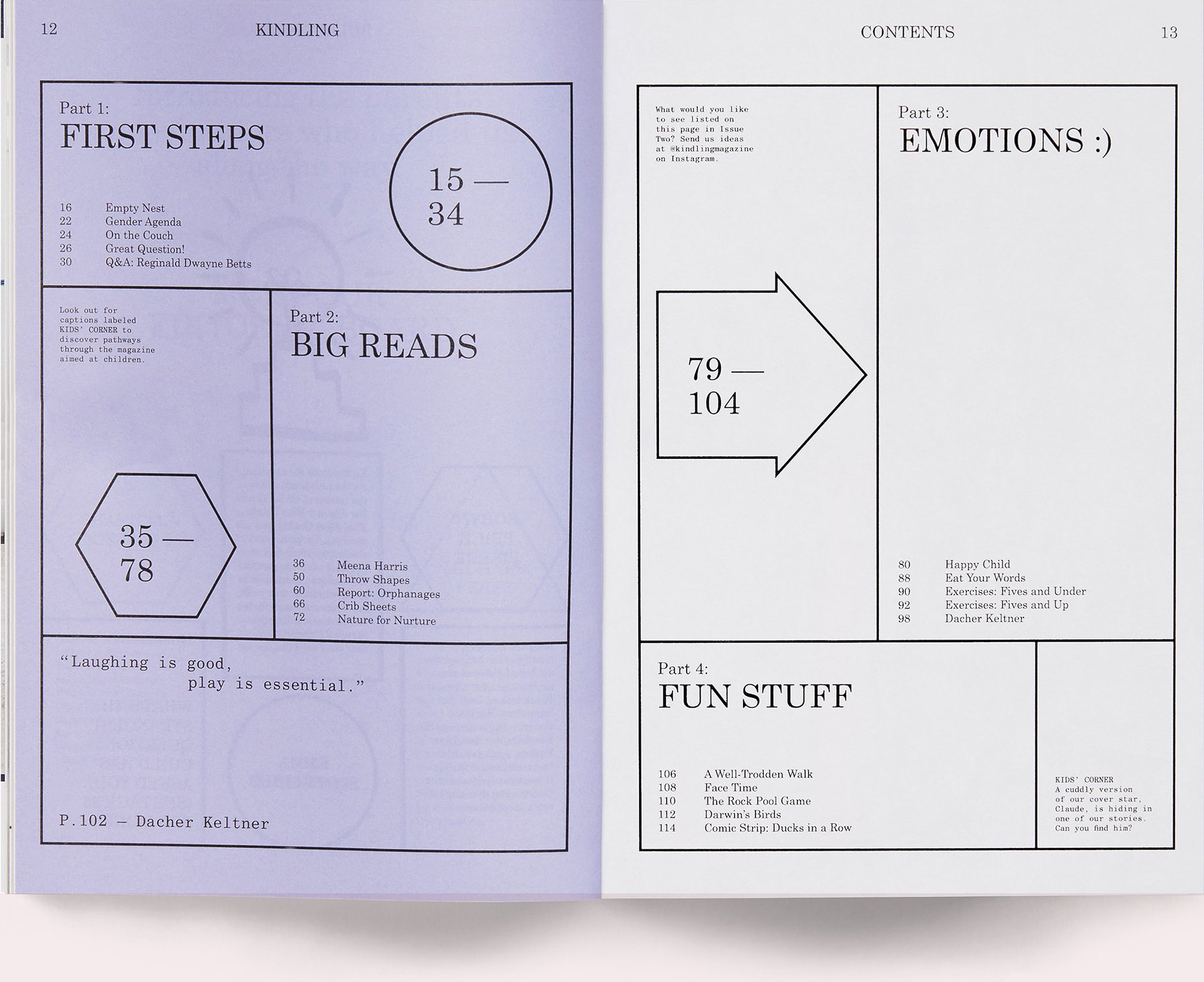
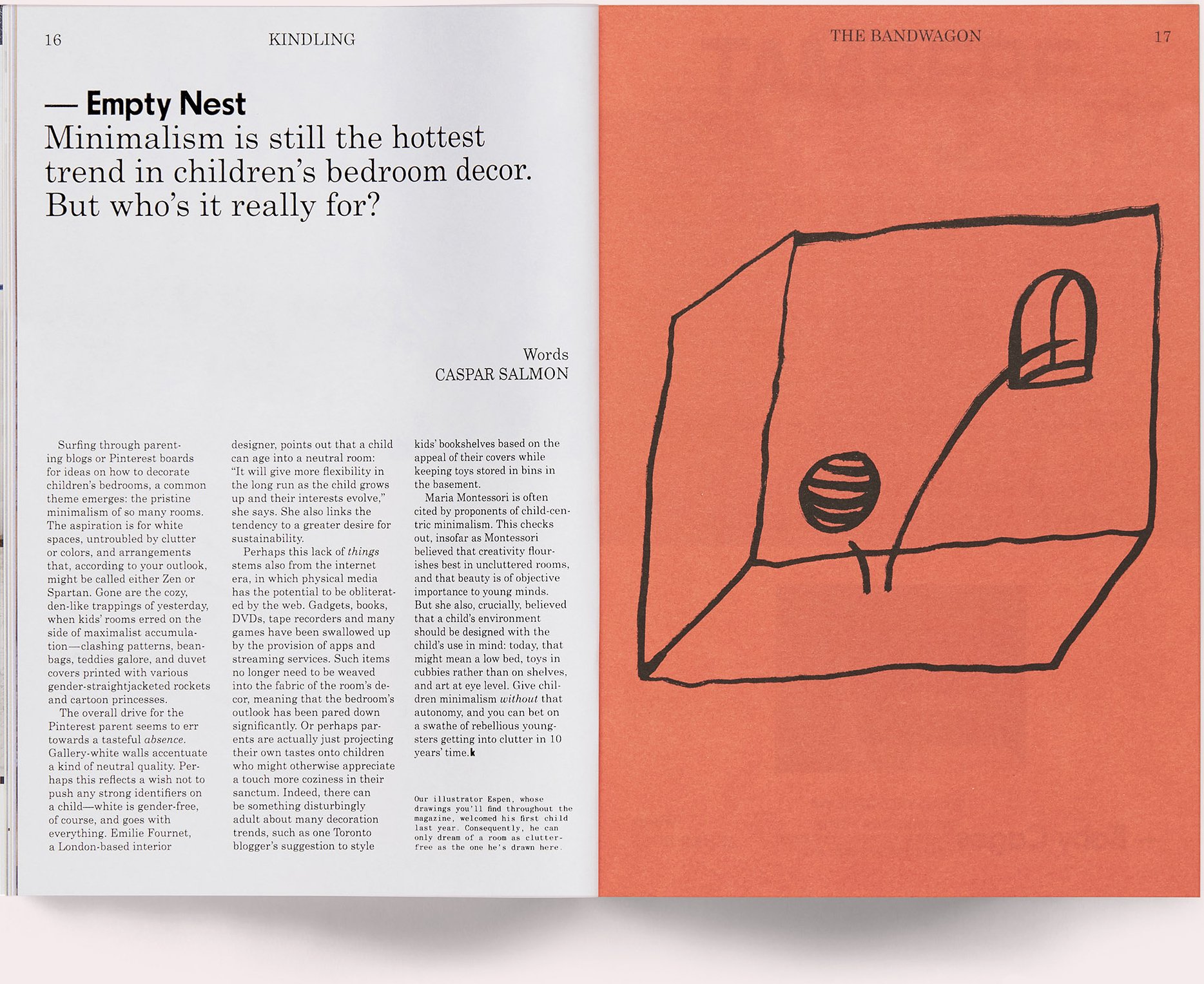
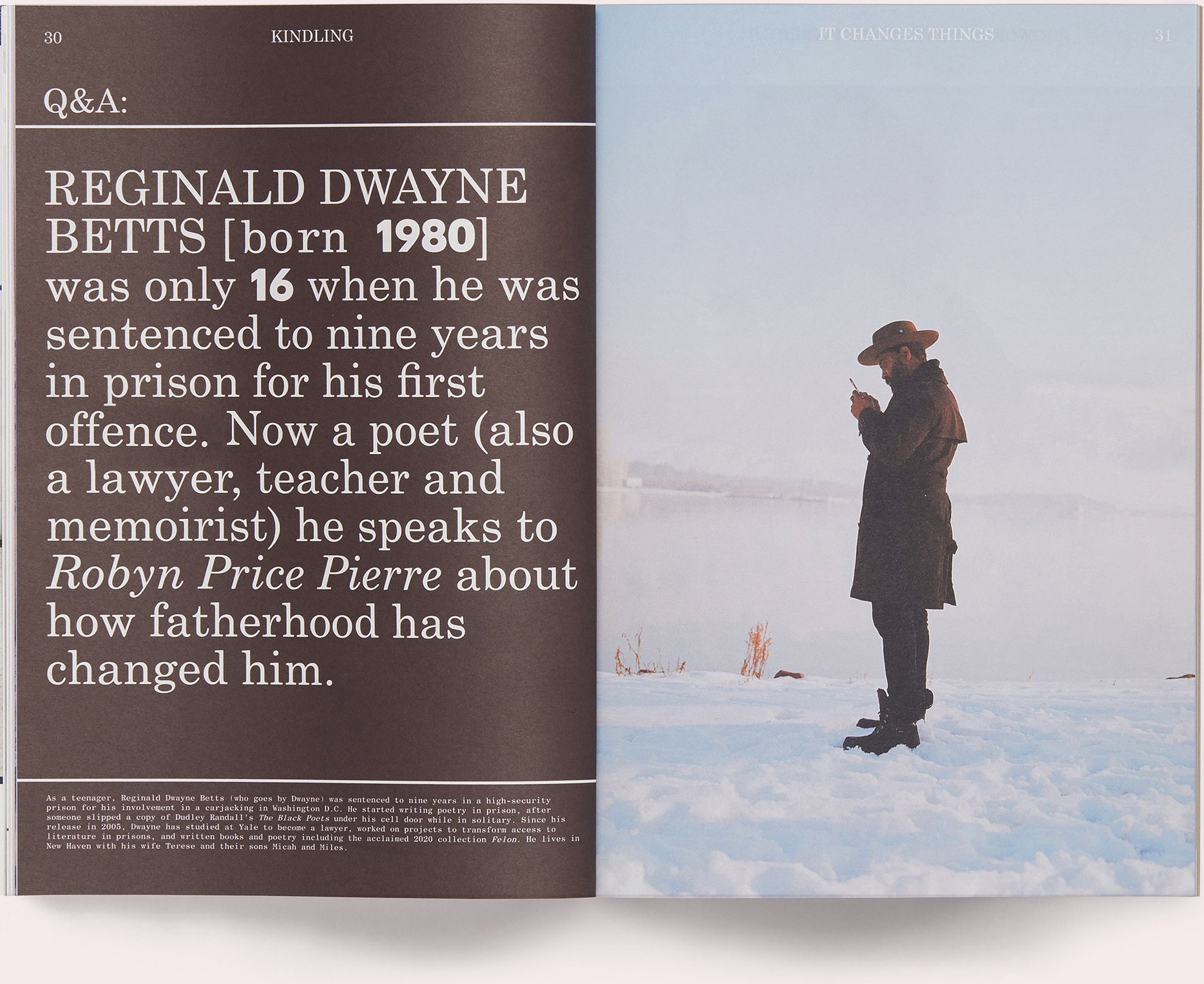
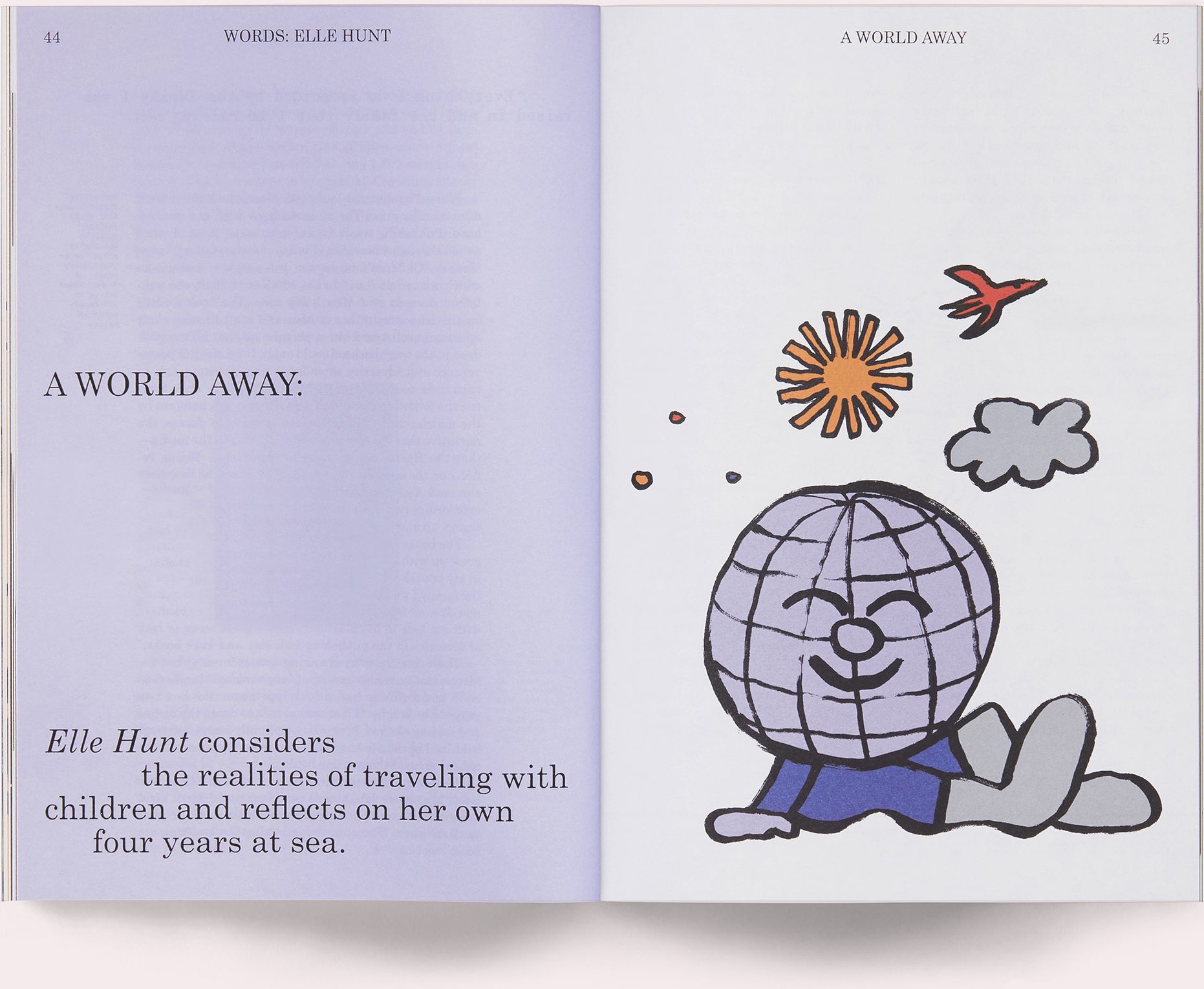

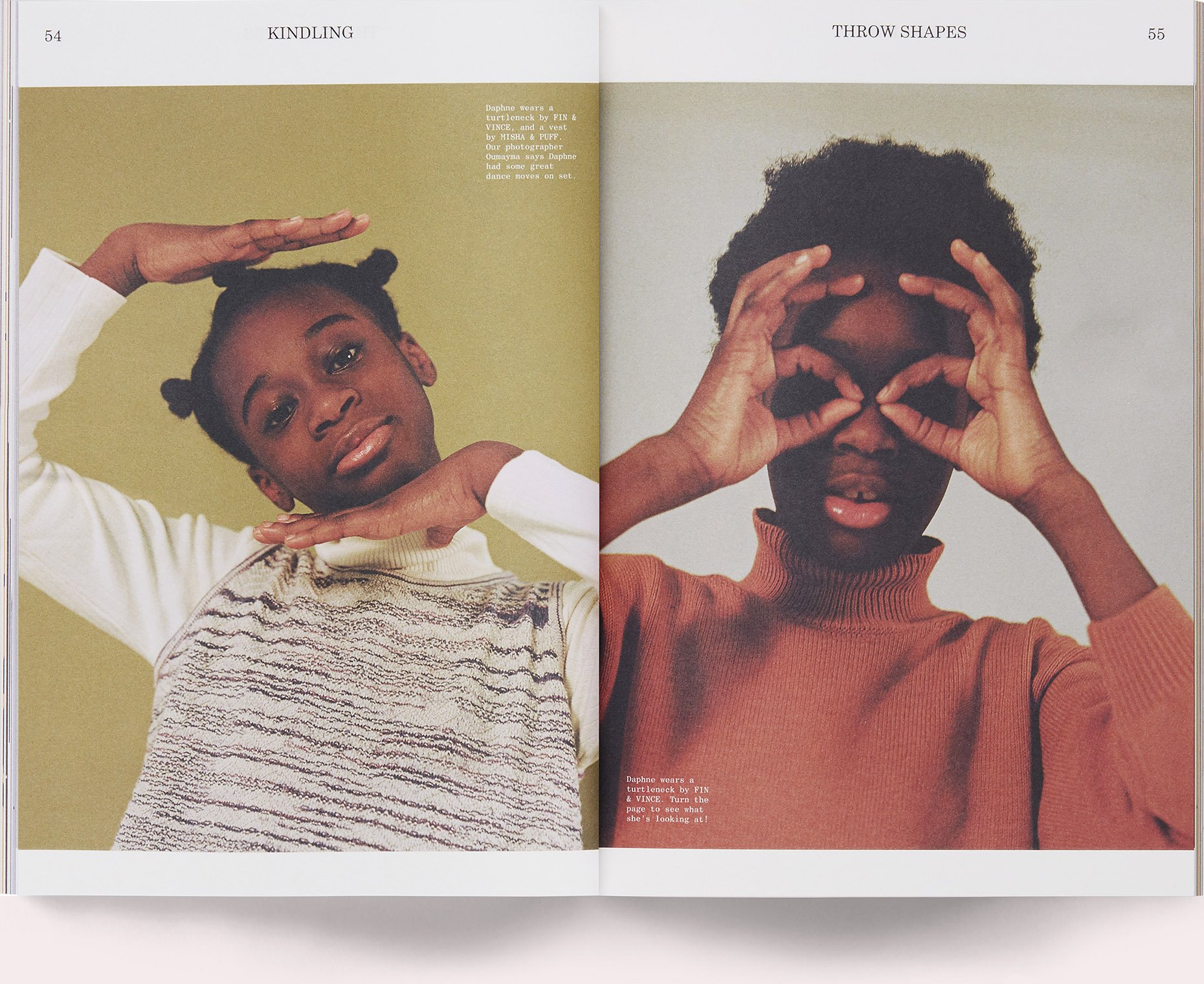
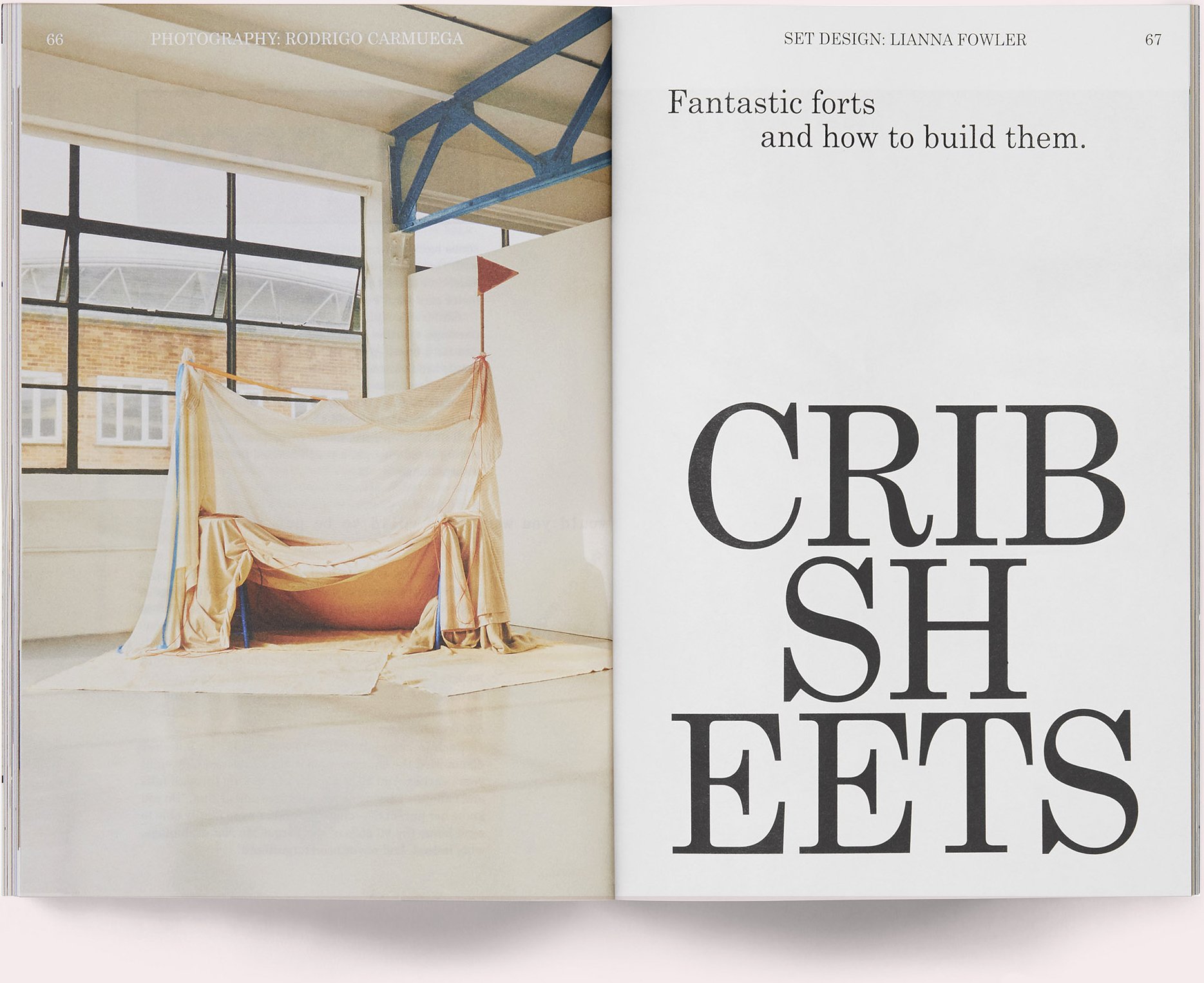
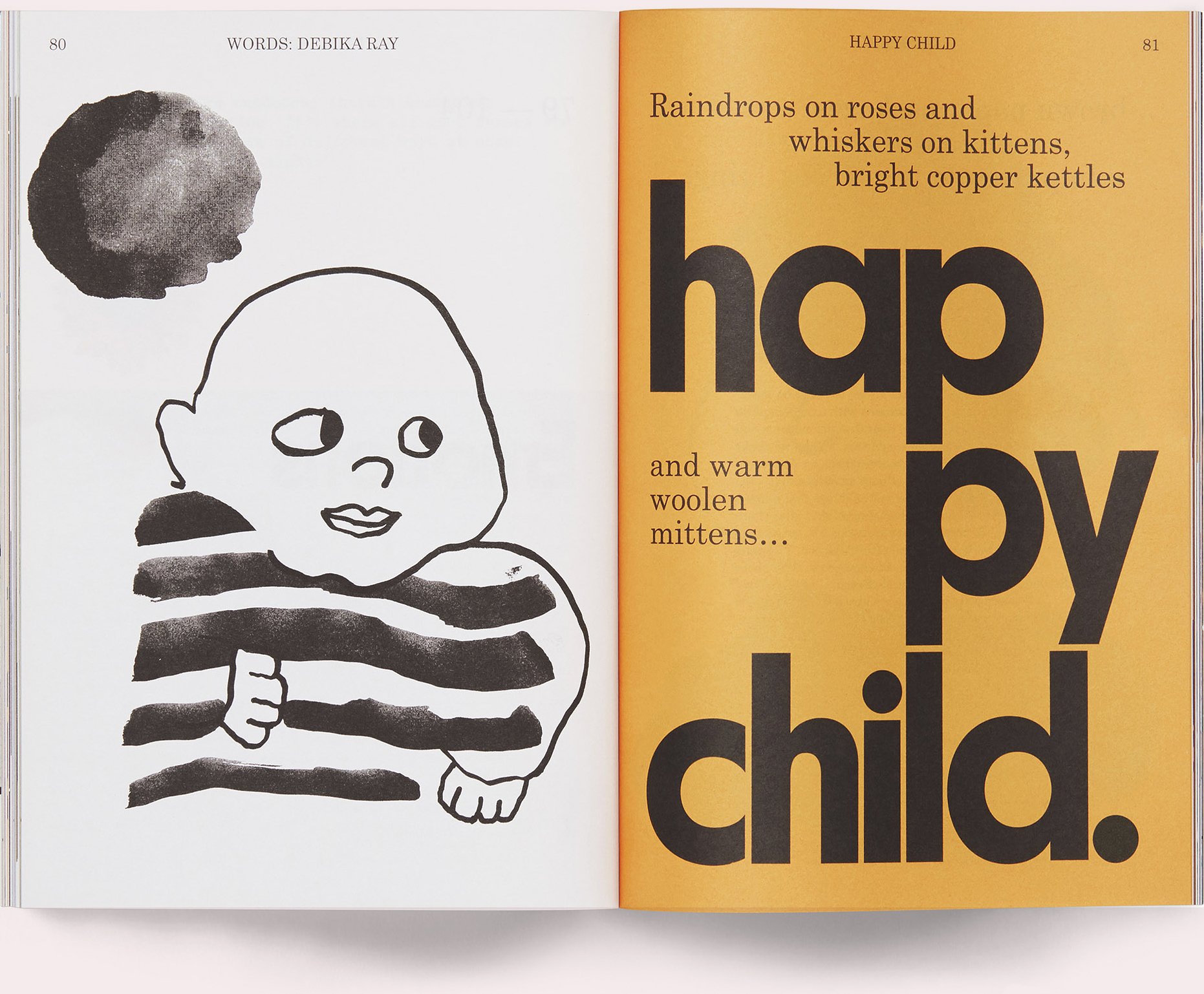
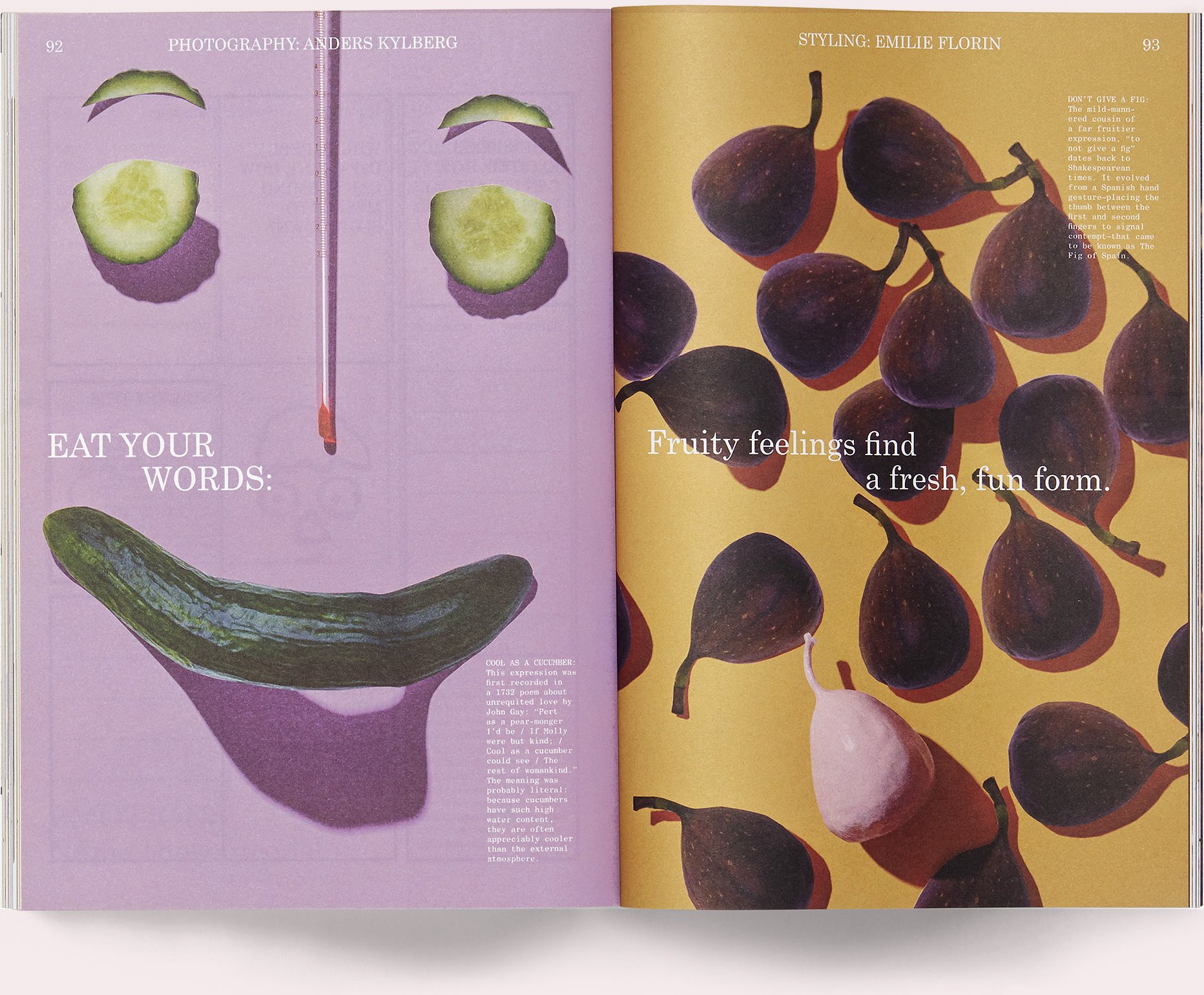
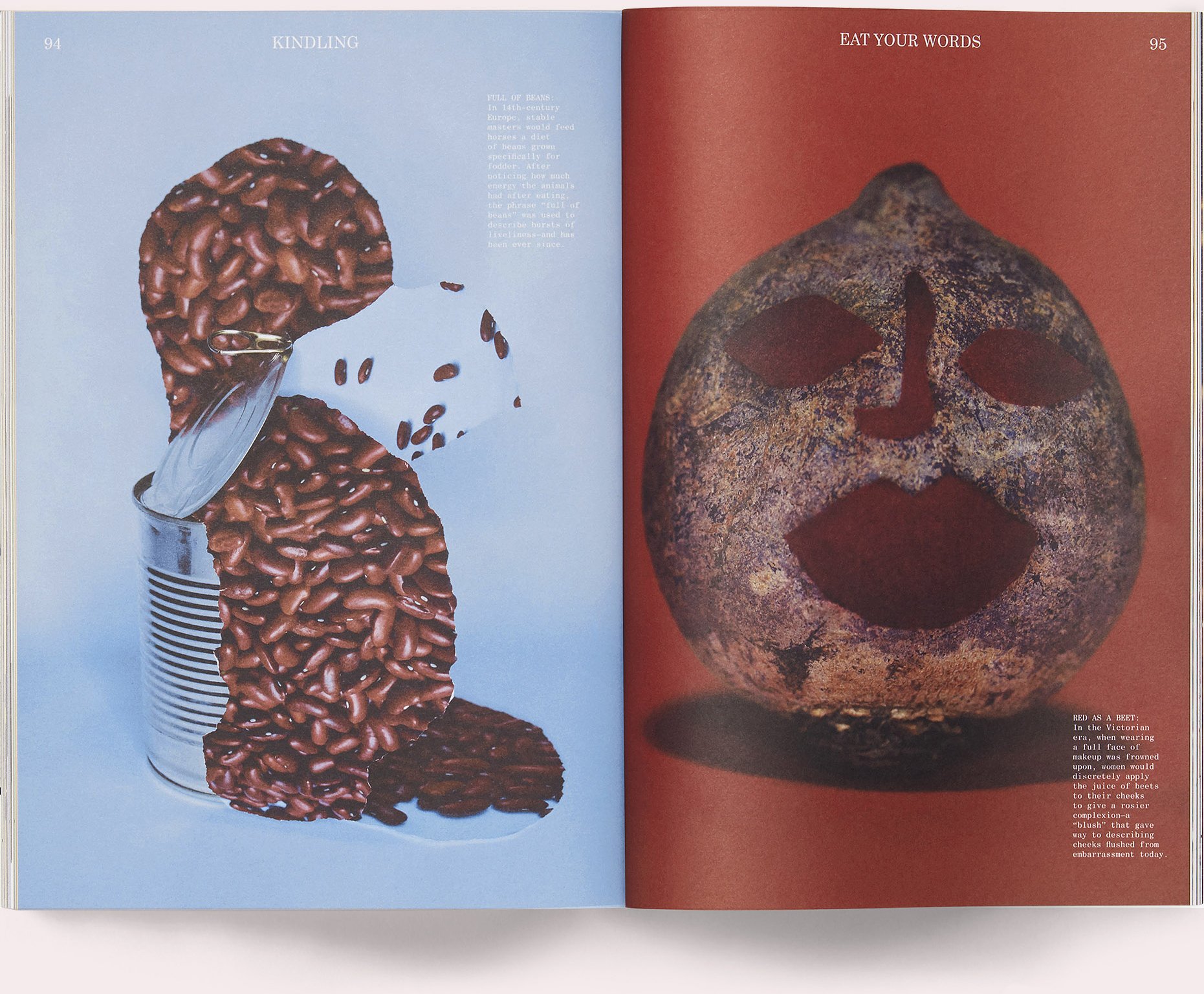
Patrick Mitchell: Yeah.
Alex Hunting: Yeah. So Jeremy used to do a magazine design conference called Colophon, which was in Luxembourg, which was just, like, a massive indie magazine festival. And they were doing a book to celebrate the festival called We Make Magazines. And it was basically a massive book about all of the independent magazines that you could think of.
And I wasn’t really into editorial design, particularly. I wasn’t into anything. But I quite liked book design. And basically the internship was just to help design this book. And it was me and a guy called Lars [Laemmerzahl], who was at my college as well, who were helping design it. And it just completely opened my eyes to this amazing, incredible world of independent mags. Bonkers, absolutely bonkers, sort of stuff.
So it was a real eye-opener. And from then forward, I was just really motivated. It pushed me a lot in that direction, actually, towards editorial design. So I owe basically a huge amount to that year in industry. But in terms of the college education in general, I think, because I was a bit lost, I didn’t have the best experience.
But I think it might be different in the States, but arts education here is not in a particularly great state, actually. I think a lot of the people that I have, that come and intern or come as juniors in college, the amount of money they have to pay now. And you don’t even get a space of your own at college. You don’t even have a desk or something, which I think was the one thing at art college you probably used to have, right? You used to pay your money and have a little bit where you could go in and work.
So I didn’t necessarily have the best time at college, but being in London was amazing. And I think it’s the people that you meet and the opportunities I think you get, are so much more important in a way. Or they were more important to me than all of the teaching and that sort of thing.
Patrick Mitchell: I remember when Jeremy was doing that event. I was always desperate to go, but it never worked out. But that’s the kind of thing that can really focus you on what you want to do with your life. And it sounds like such an intense weekend in such a specialized area really may have been the education you needed to guide you to where you are now.
Alex Hunting: Yeah, for sure. And I think the passion that you were seeing from all of these different people doing insanely different subject matter, but all storytelling, or image makers, all that sort of stuff, like incredibly diverse subjects, and all brought together for one sort of party, basically, over the weekend. It was amazing. Absolutely amazing.
So yeah, I owe Jeremy a lot for that. It was really, really eye-opening and it really focused me so much to the point where, as I say, I hadn’t been achieving much, hadn’t been doing very well in my degree, all that sort of stuff. But I came back into the final year and I just got it really. I finally understood graphic design, I’d learned a lot from people in the industry, I knew what I wanted to do more, the sort of studios that I was looking at, all that sort of thing.
So yeah, it was all really from there. So it was very lucky that I wanted to go to Barcelona for the summer.
Patrick Mitchell: In your college, did you get any education at all on the entrepreneurial aspect of launching your own career? Did they teach you any of the skills to run your own business?
Alex Hunting: I probably didn’t go to it, to be honest with you. I’m sure that they do those things. There are probably those electives. There are probably those talks and those things. But I just was disillusioned with the whole thing. I was having a good time, but, you know, I wasn’t … yeah. So I’m sure they do. I’m sure they do.
But I wasn’t really thinking about that, you know, I certainly didn’t think I’d be setting up my own business. I certainly didn’t think I was going to run a studio or anything like that. It wouldn’t remotely cross my mind.
I’d enjoyed interning so much that I just thought, “Oh, you know, when I leave, I’ll just go and try and get a job somewhere and work there forever. It’ll be the best, best time. It’ll be a lovely time.”
Patrick Mitchell: I think most people would agree it takes balls to go out on your own, to get space, to get clients, and all that. Did you grow up in a family with entrepreneurs?
Alex Hunting: My dad has run his own business pretty much his entire career. And I think you do get a little bit of that. I mean you see the bad stuff as well, I guess. You see times when you are flush and times when you are not, and that sort of thing.
So I think there’s a good work ethic from seeing that, being around that. Which I think I have always had—obviously apart from being at college—but once you’re focused on your own thing...
Patrick Mitchell: Was he passionate about what he did?
Alex Hunting: Yeah. He always says to me that he fell into what he did because he was a little bit lost. He’s a surveyor, he runs a chartered surveying business. But he really enjoys his job because he’s out and about, and he’s meeting new people, and he’s built a business. He’s very social, employs lots of people, and he’s a good boss.
So, yeah, I think he definitely enjoys it. I don’t think it’s a passion in the way, I mean, I always forget, and I think it’s amazing how lucky—whenever I think it’s awful, when work is hard—we are just like the very, very minority of people that are really passionate, that their, kind of, their hobby is almost their job. And that is a huge privilege to have.

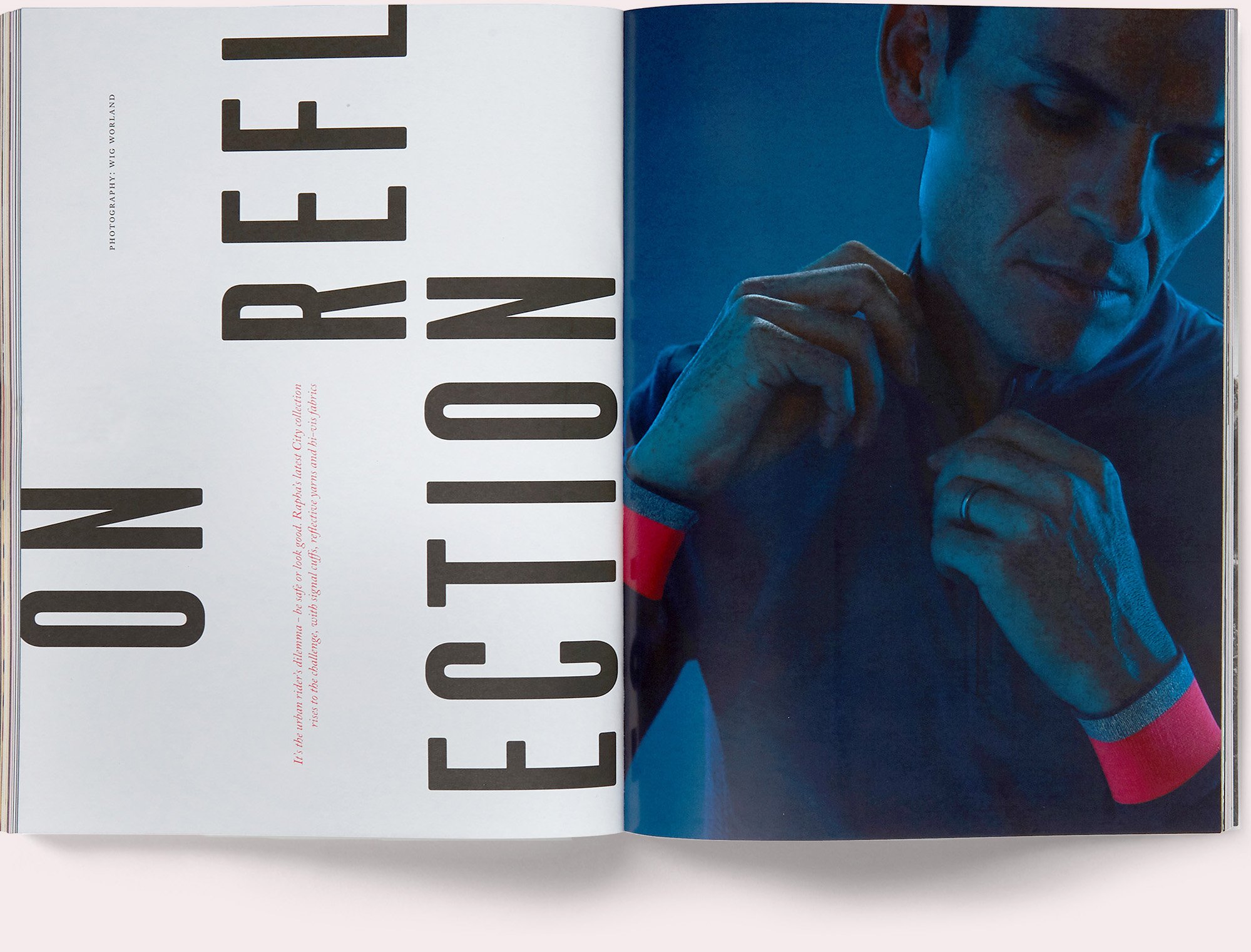
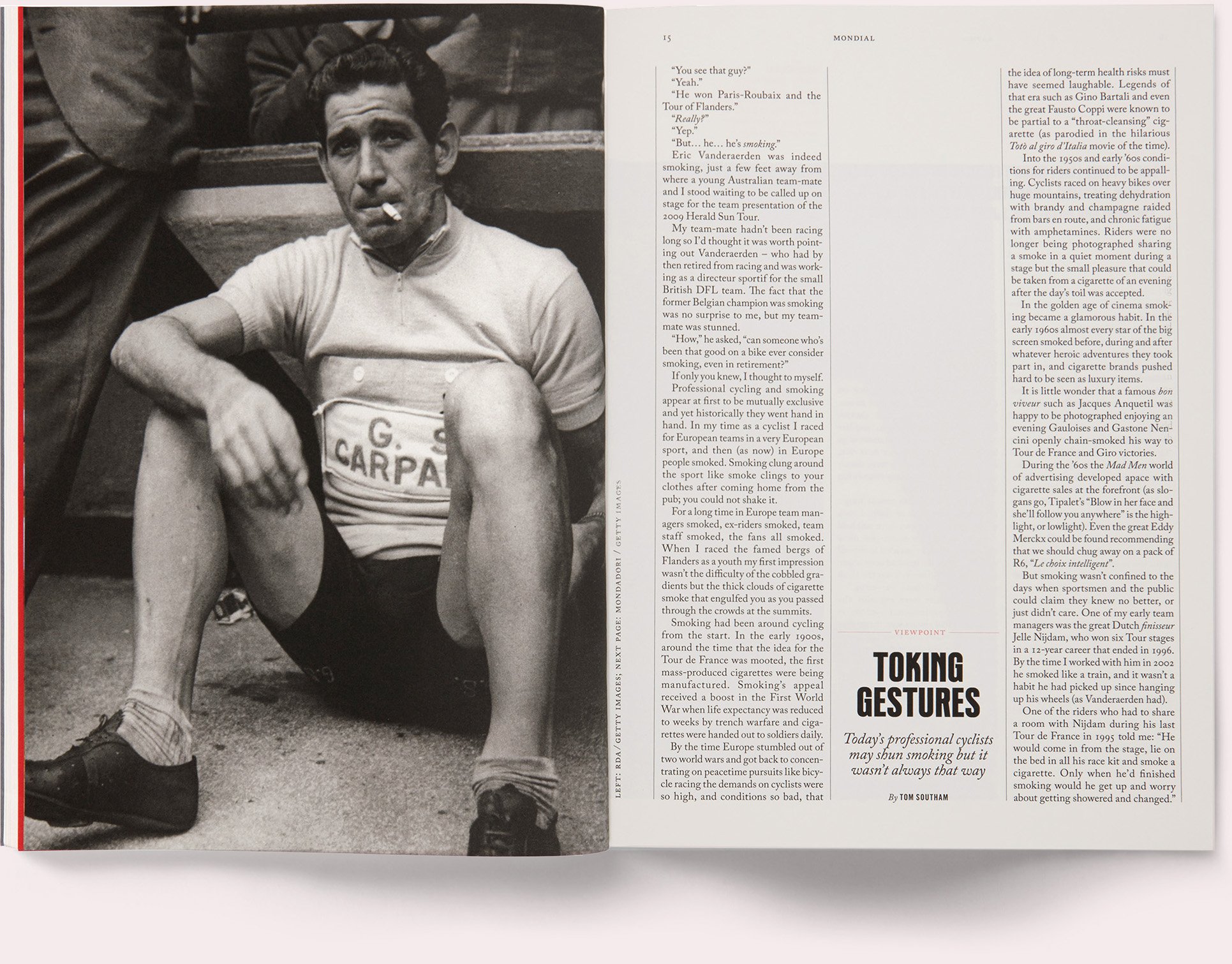
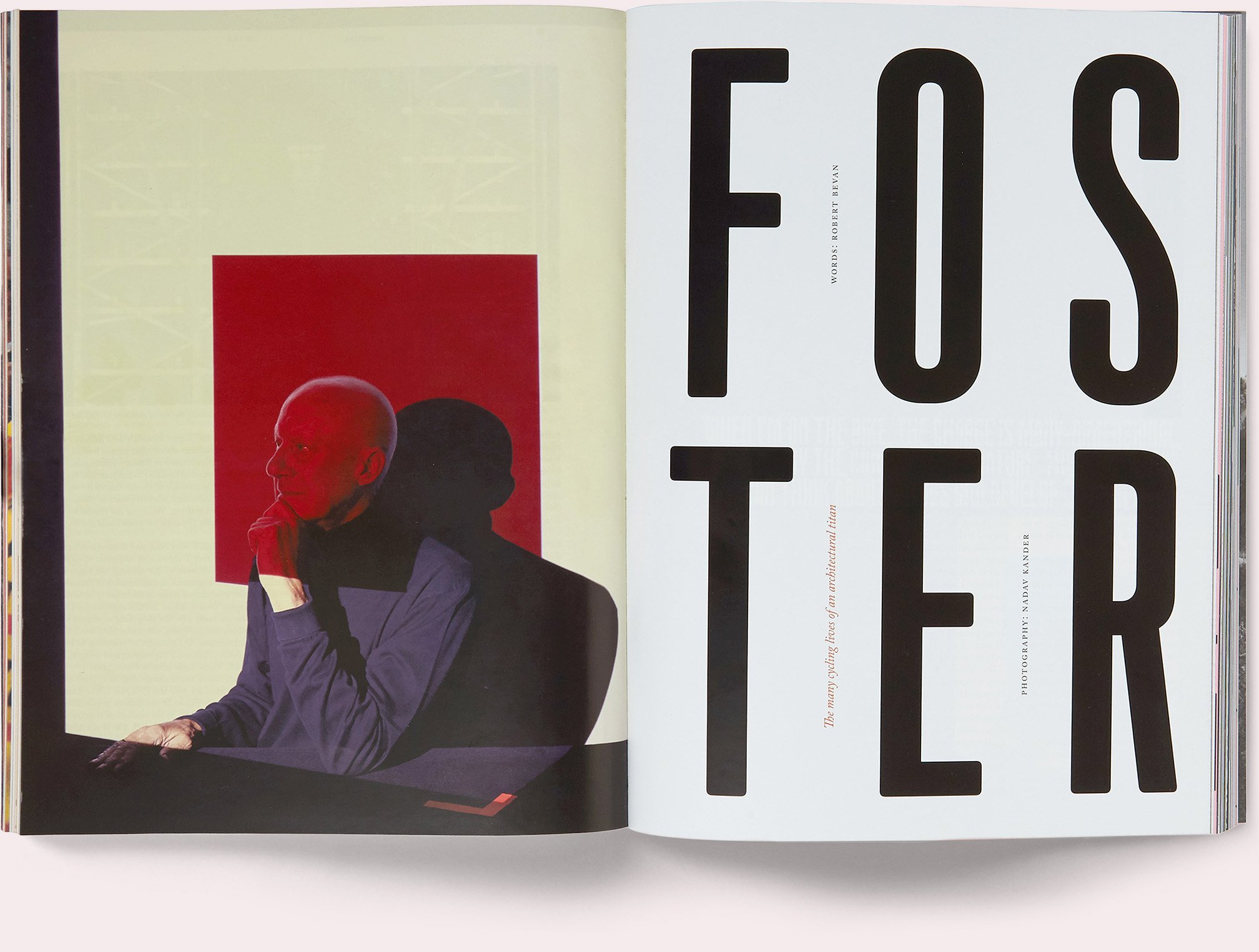
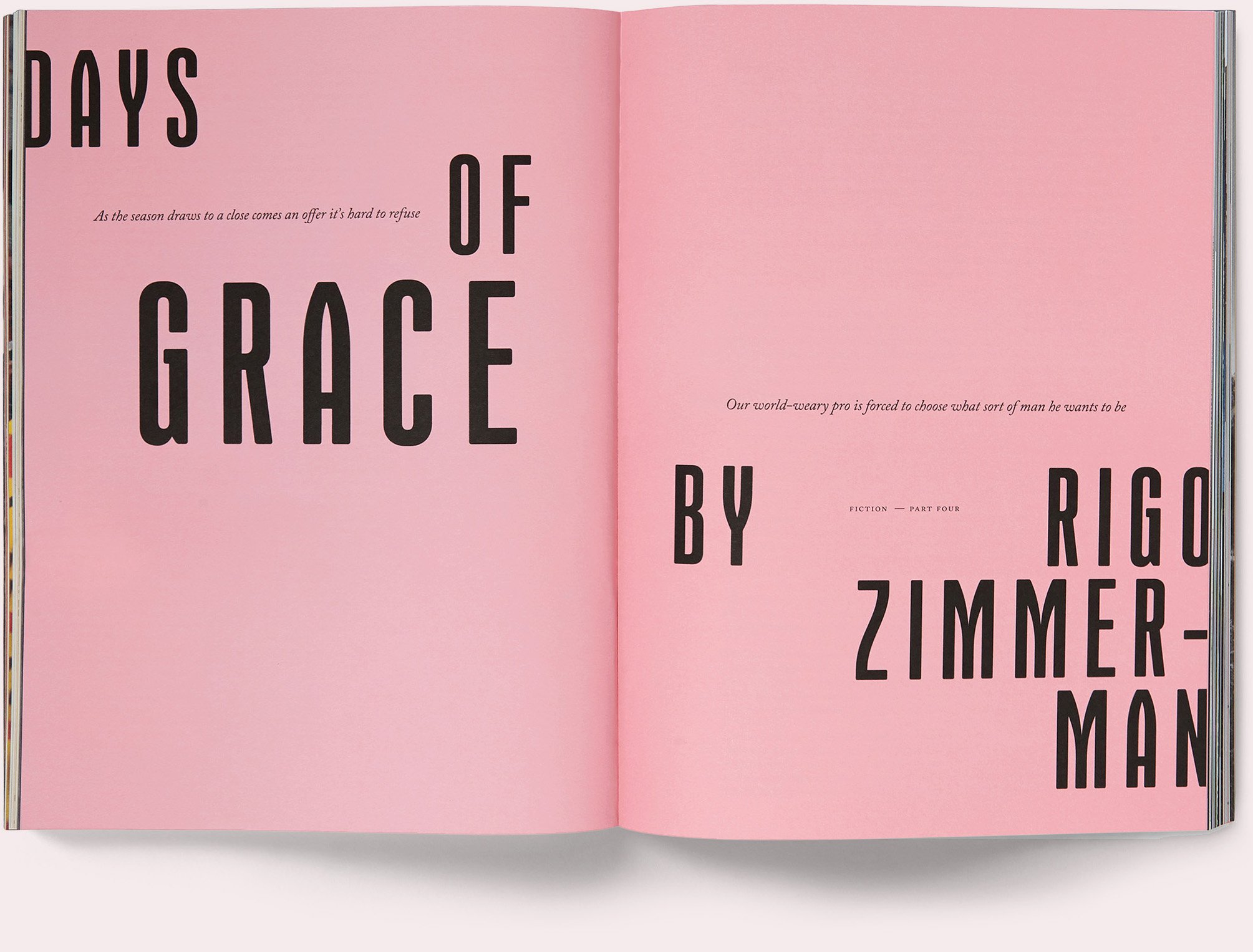
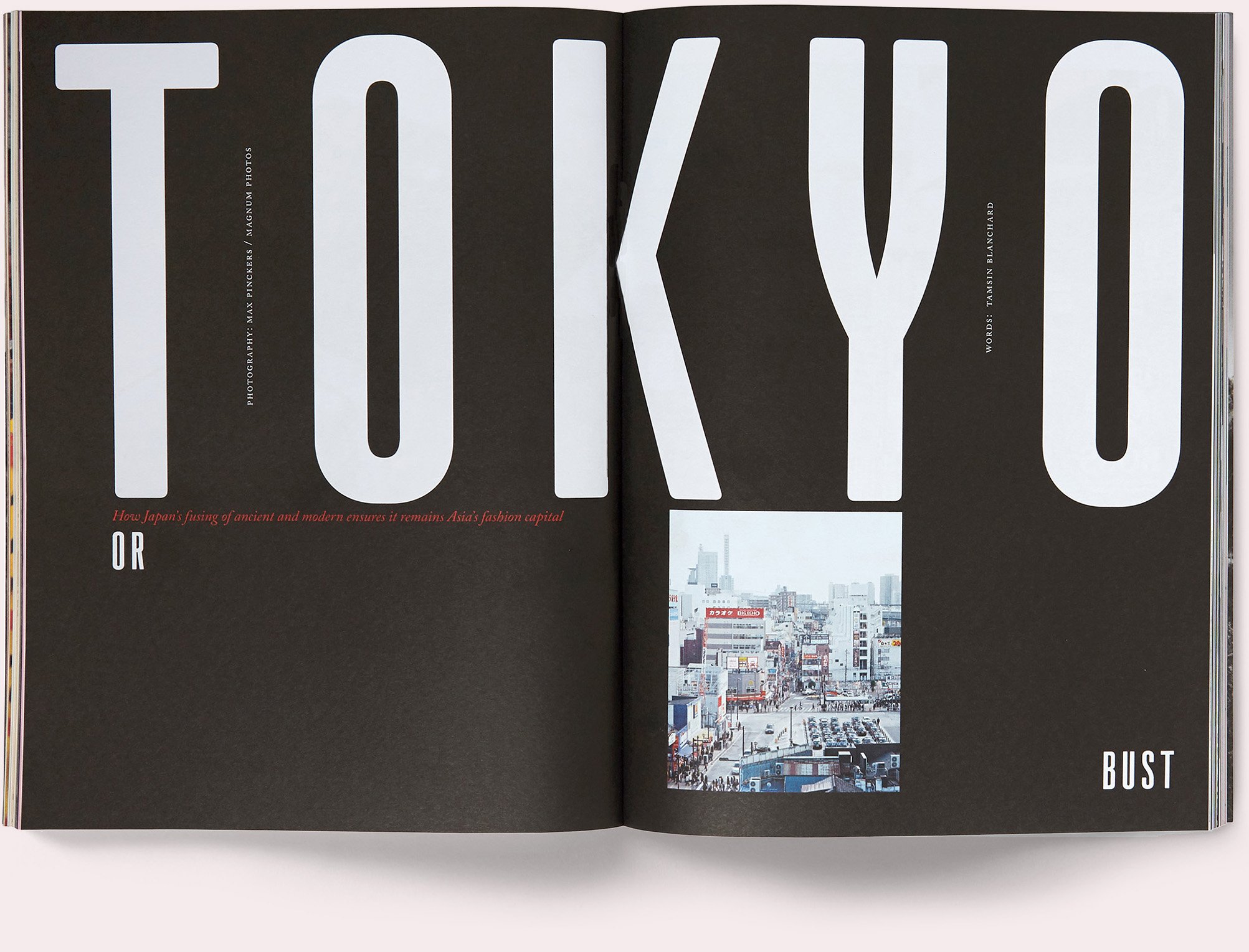
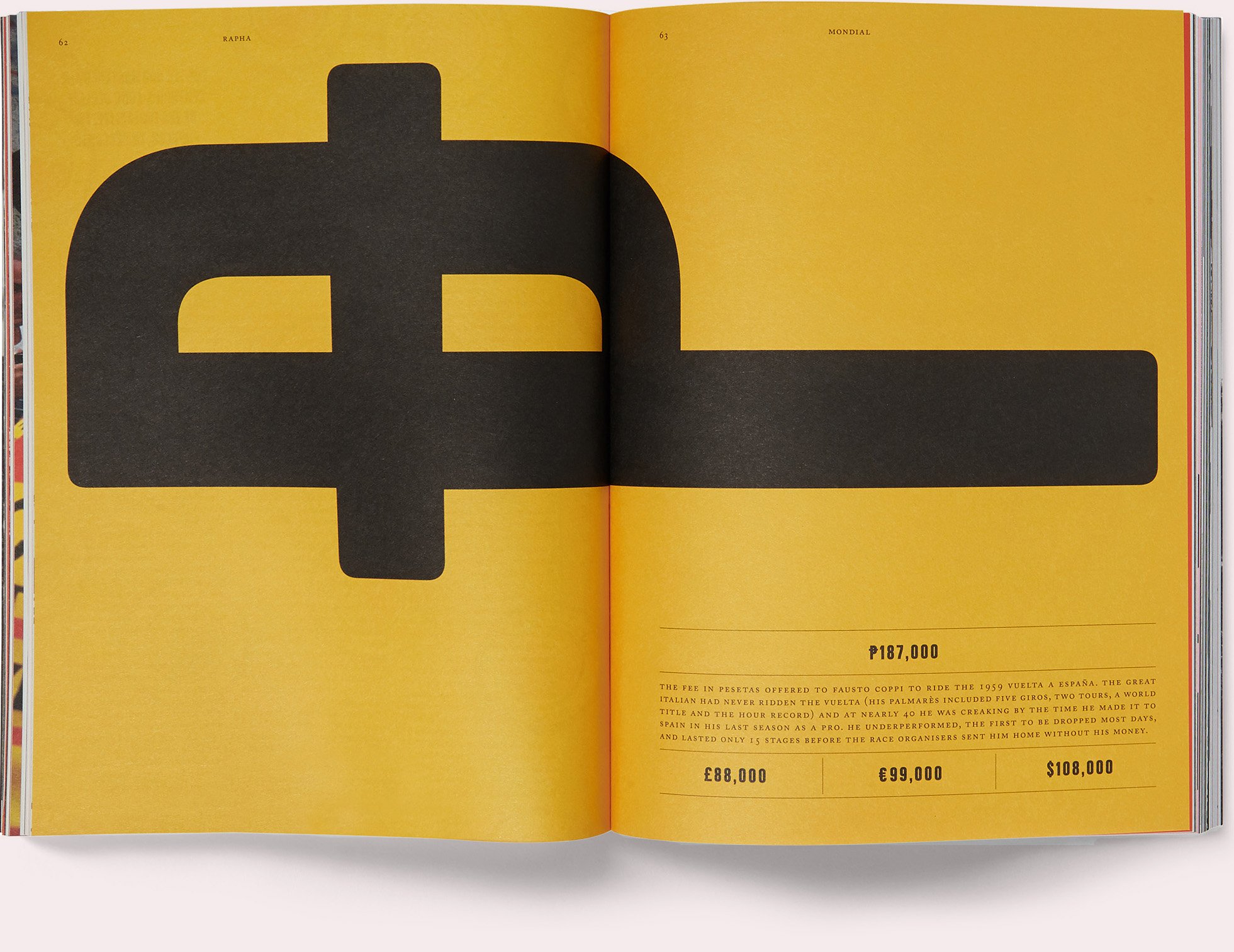

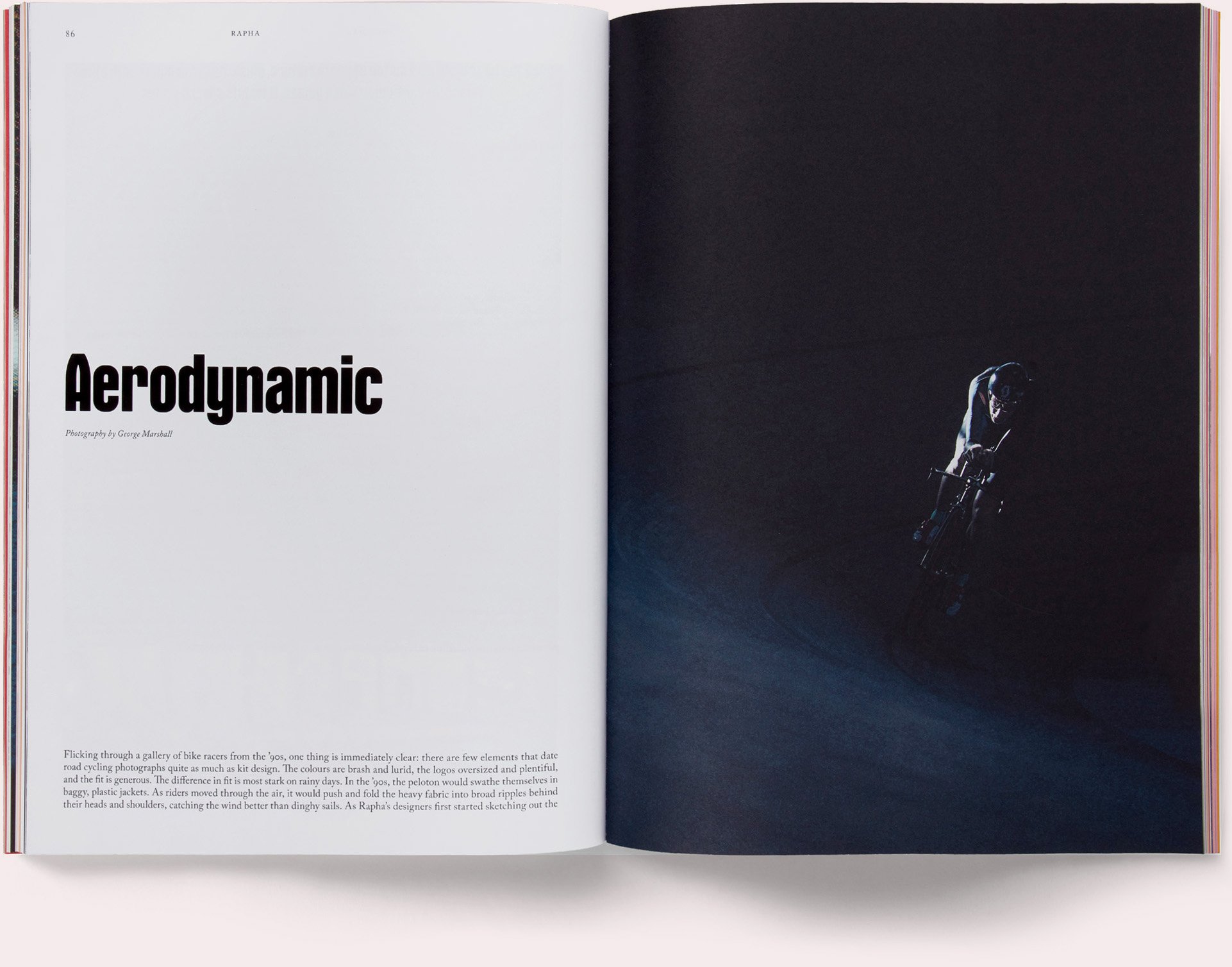

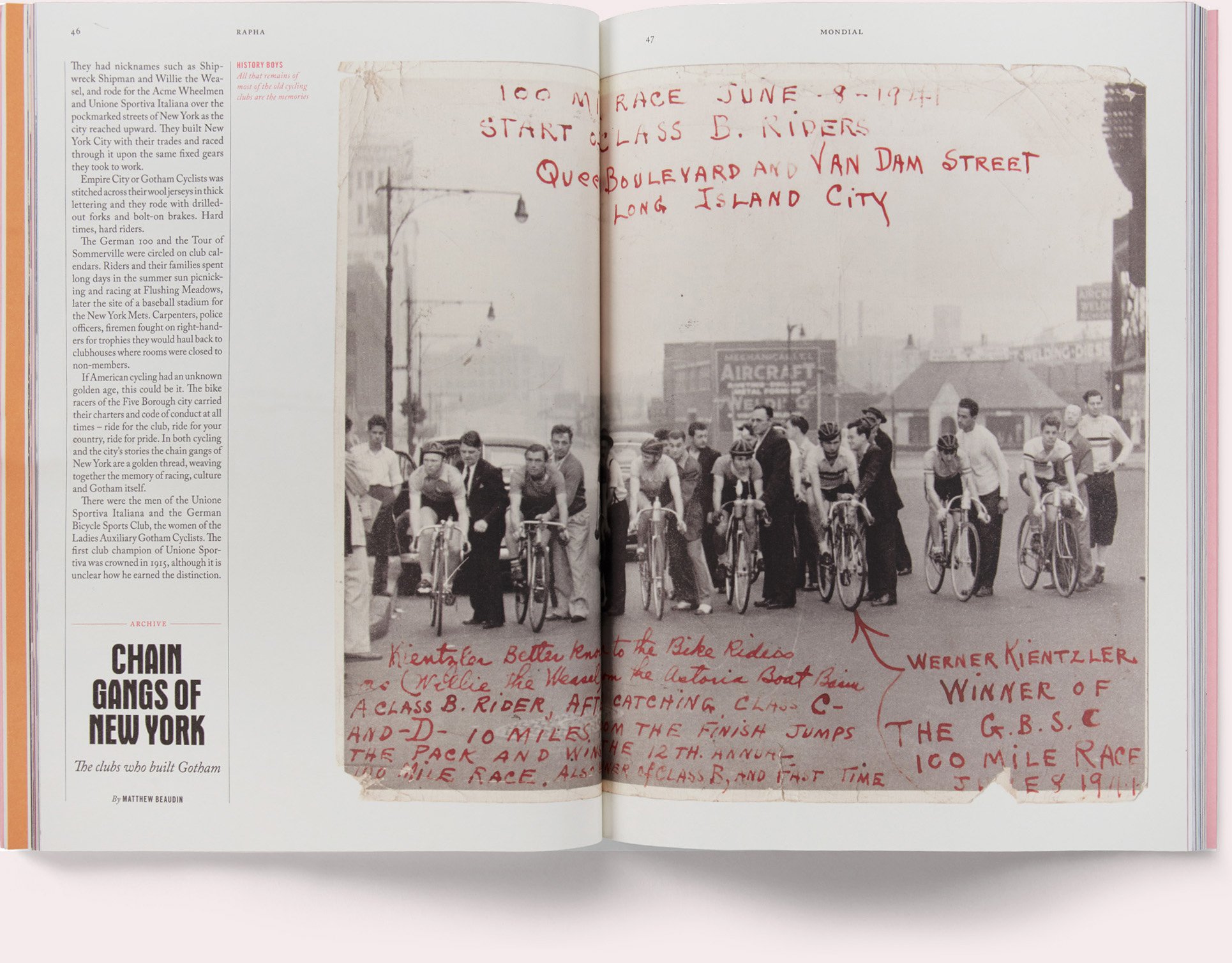
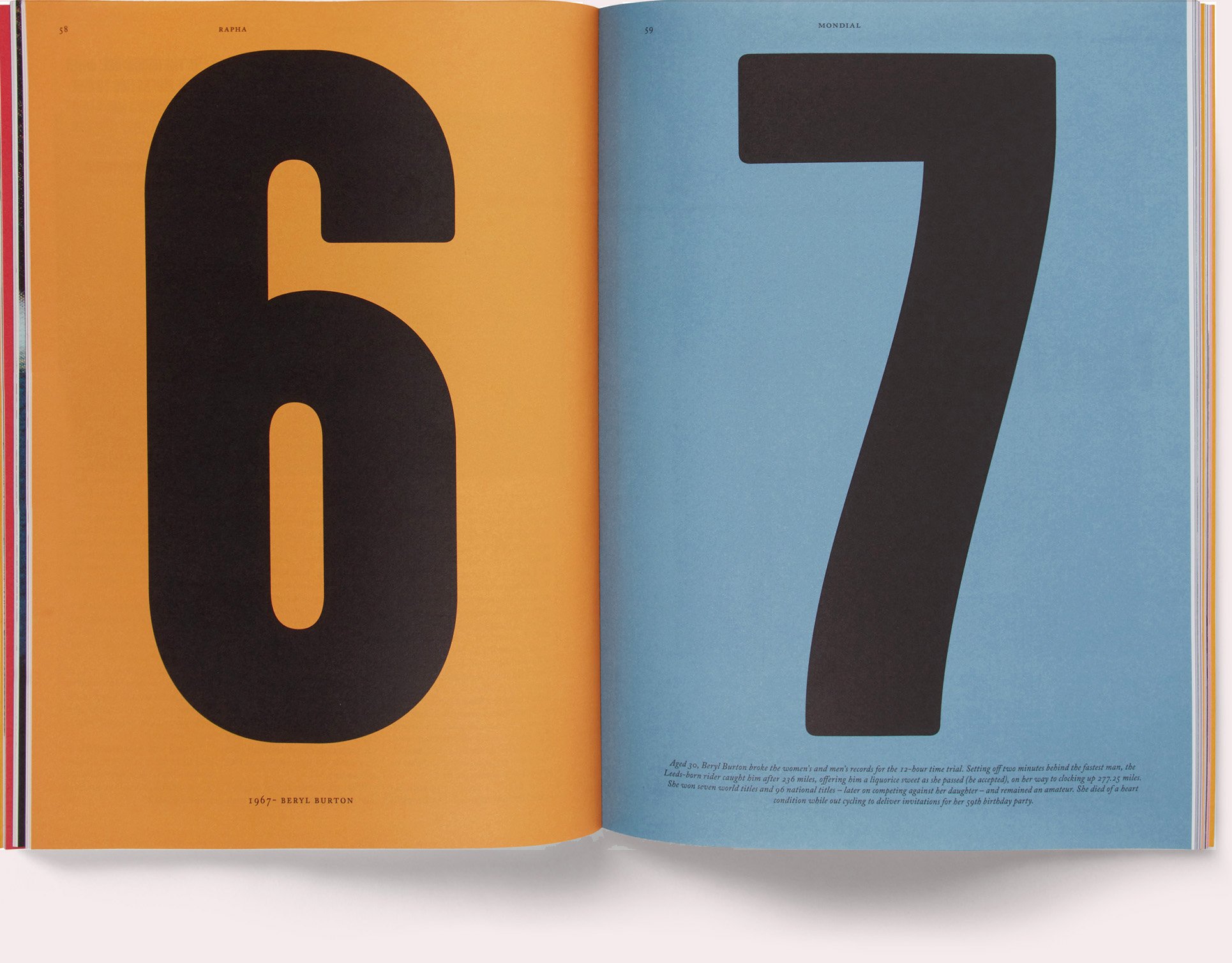
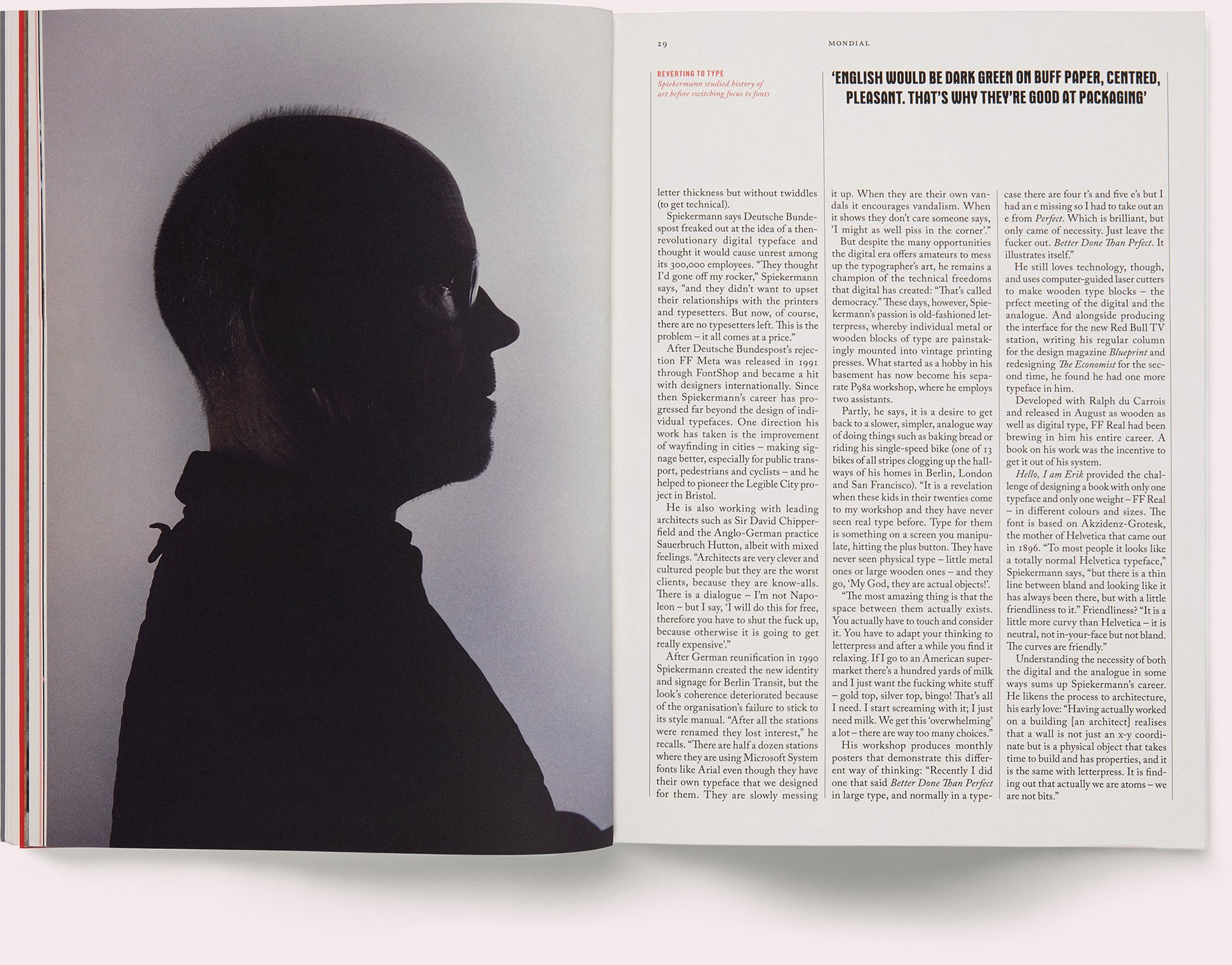
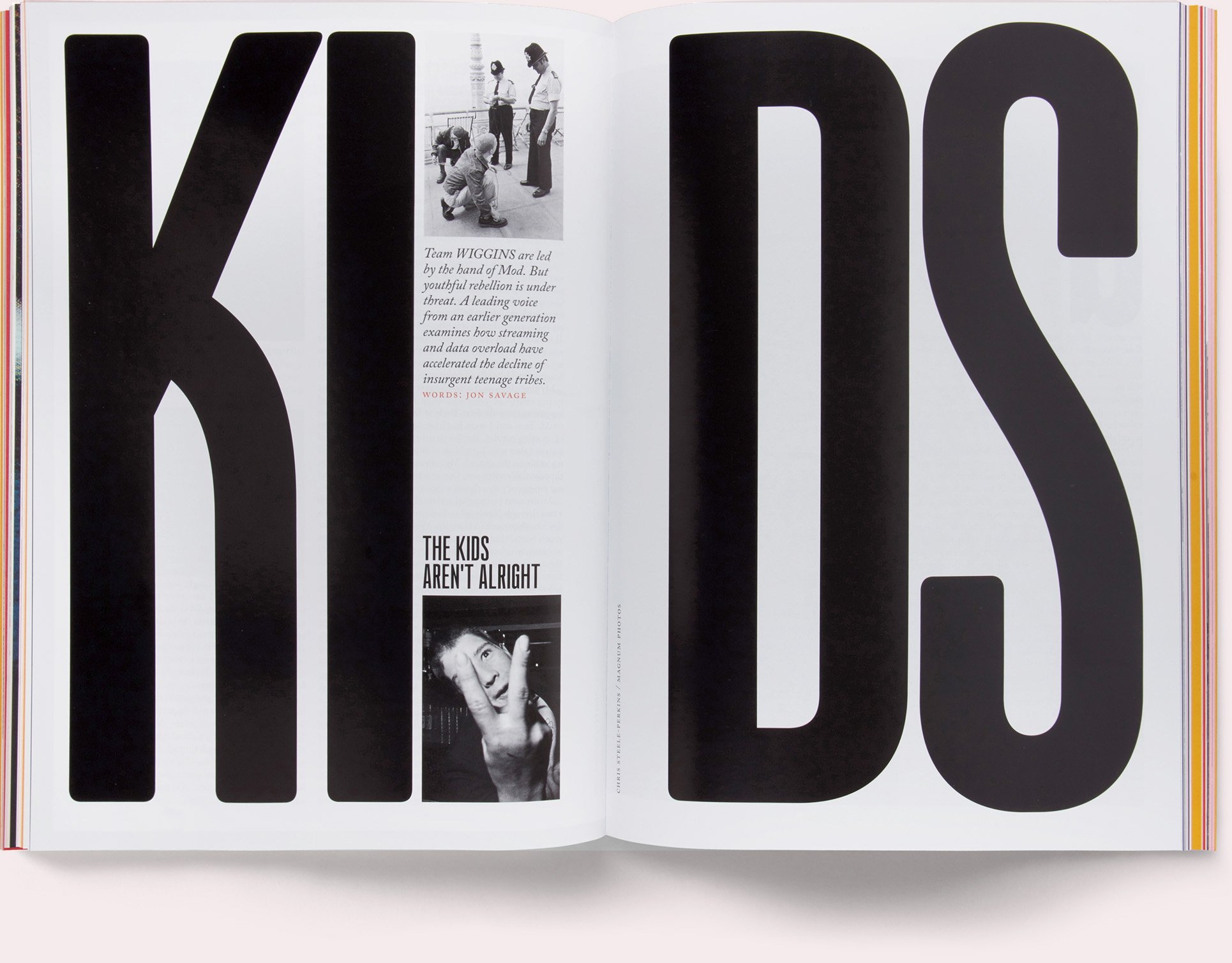
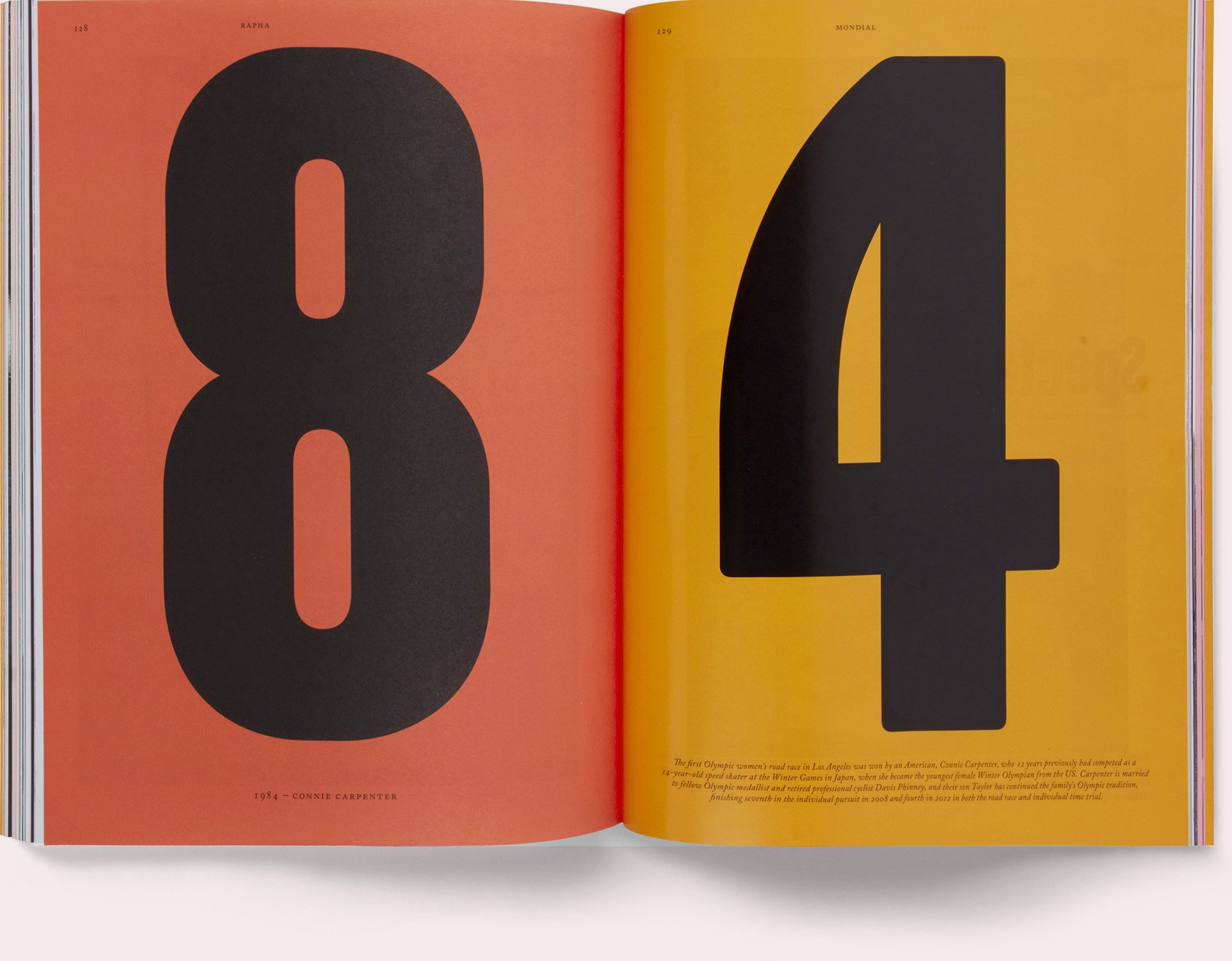
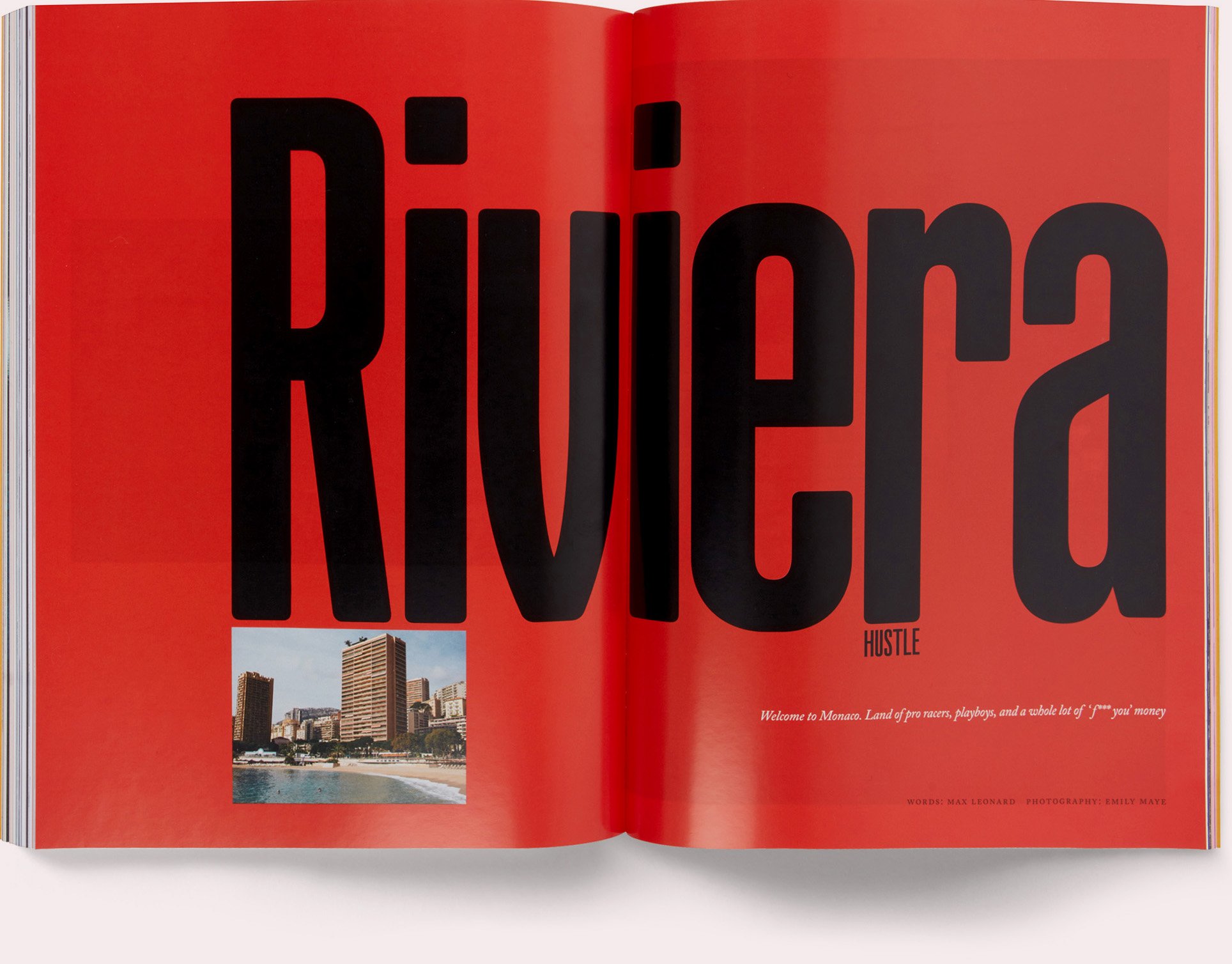
Patrick Mitchell: There’s a lot of talented designers, but there’s not a lot of designers who have whatever that missing trait is that allows them to have the confidence to just open their own place. And I’ve met some amazing people who have just failed miserably, as our business falls apart around us, who have been forced to go out and try to start their own business and they just can’t function outside of a corporate structure. But you did. And look at what you’ve done with yourself.
So let me ask you, I know you worked a couple places before you launched your studio, but when you did, what were the challenges? Did you open your door with clients already in hand or did you have to start hitting the pavement looking for work?
Alex Hunting: I was doing some freelance-y sort of bits and pieces. I think like everyone, you start freelancing, and then get to a point where it sort of naturally becomes like a business, and you need help on projects. So it becomes a business.
But what did I start with? So I was really lucky that I was doing some freelance work for The International New York Times, the Opinion section, before it was the International Herald Tribune, and then it became The International New York Times, and they were looking for a London-based freelance part-time art director.
And that was amazing as an opportunity because it was only part-time. But I had some regular—do you know what I mean—kind of income, while I could do other projects. And obviously when you’re starting out, your fees are so low for the projects that you want to do because you’re in that constant struggle of wanting to do great work to try and attract more work, but you know that great work you’re getting just pays so poorly.
So I was lucky in that sense that I had a bit of that buffer. And that gave me a bit of space to be able to start the business really. But I do think that editorial design is actually quite good, it’s like a good part of graphic design, in a way, to start a small business. Because, by its very nature, it’s regular work. So if you get a magazine contract—whether that’s quarterly or monthly, biannual, all that—when you get those coming in you can plan. You know that you’ve got x amount of work lined up.
And obviously it depends how many of those contracts you’ve got, but as opposed to if you are just going out and trying to get, say, branding projects or that sort of thing, it’s not necessarily as easy. So I’ve always thought editorial design is quite good like that.
And I was quite lucky that, relatively early on, I started freelancing. I was working with Matt Willey on a magazine called Avaunt. And then after that, the first big, great project that my studio took on was Rapha’s magazine Mondial. And then quite soon after that we started doing Kinfolk.
And those were biannual or quarterly magazines. And so even that as a start, you just know that there’s X Amount of money coming in and off the back of that, it all grew from there. And you’re going out and getting clients from there.
“We are just like the very, very minority of people that are really passionate, that their hobby is almost their job. And that is a huge privilege to have.”
Patrick Mitchell: When I look at your work, which is really just stunning, I find it fascinating that someone with your talent has somehow avoided working for the big brand name magazines. Have you ever been approached by the big publishers?
Alex Hunting: Yeah, I have. I have actually. But not in the UK, though. Only in the US, once. Well, it’s happened twice. But it’s your terrible, terrible visa system that you have. So basically, if you get offered one of these jobs, you have to get an O-1 Visa, which means you are really good in your field and you are allowed to come over to the States.
But if you have a girlfriend, or a wife, or anything like that, your partner is not allowed to work under that visa. So, my girlfriend, who’s got a very successful career of her own—they’re not really decisions that you can just make on your own, sadly.
But, it never happened. I’m not sure how well I would do. I don’t mean that I’d get bored, but I do l really like working on lots of different things.
Patrick Mitchell: So if Condé Nast or Hearst called you tomorrow— with a great offer and no visa problems—with a job in the States. Would that be tempting?
Alex Hunting: What’s the title? What’s the Condé Nast title?
Patrick Mitchell: Vanity Fair.
Alex Hunting: Oooooh. Yeah. I mean, yeah. Vanity Fair or Wired or something like that—I’d be very, obviously, it’d be hugely, it’d be ridiculously flattering. And it would never happen. But I’d definitely have to think about it. No, I was obsessed with the idea of working in New York. And I love New York. And every time I go there I just always think, “God, I’d love to live here and work here.”
Patrick Mitchell: You mentioned Matt Willey, who people know from The New York Times Magazine, and who had some great success there, he’s now a partner at Pentagram in New York. What would you do if Pentagram called you tomorrow—again, no visa issues—with an invitation to join them as a partner? In London or New York.
Alex Hunting: Yeah, of course. I always think [Pentagram’s] such a designer’s thing. It’s the most flattering thing you could be asked to do in our industry, isn’t it? Because of the history, and all the partners that have gone before.
I also love the idea that it’s just all those individual teams. I love it. That you build your own little pod. And I kind of love, I mean, I don’t know what it’s like on the inside, but I like the idea that it’s quite dog-eat-dog. Like, you’ve got to hold up your end of the bargain. When you’re sitting around the, like, end of year meeting or whatever, and it’s “Michael Beirut’s brought in MasterCard!” or something. And you’re like, “Oh shit!”

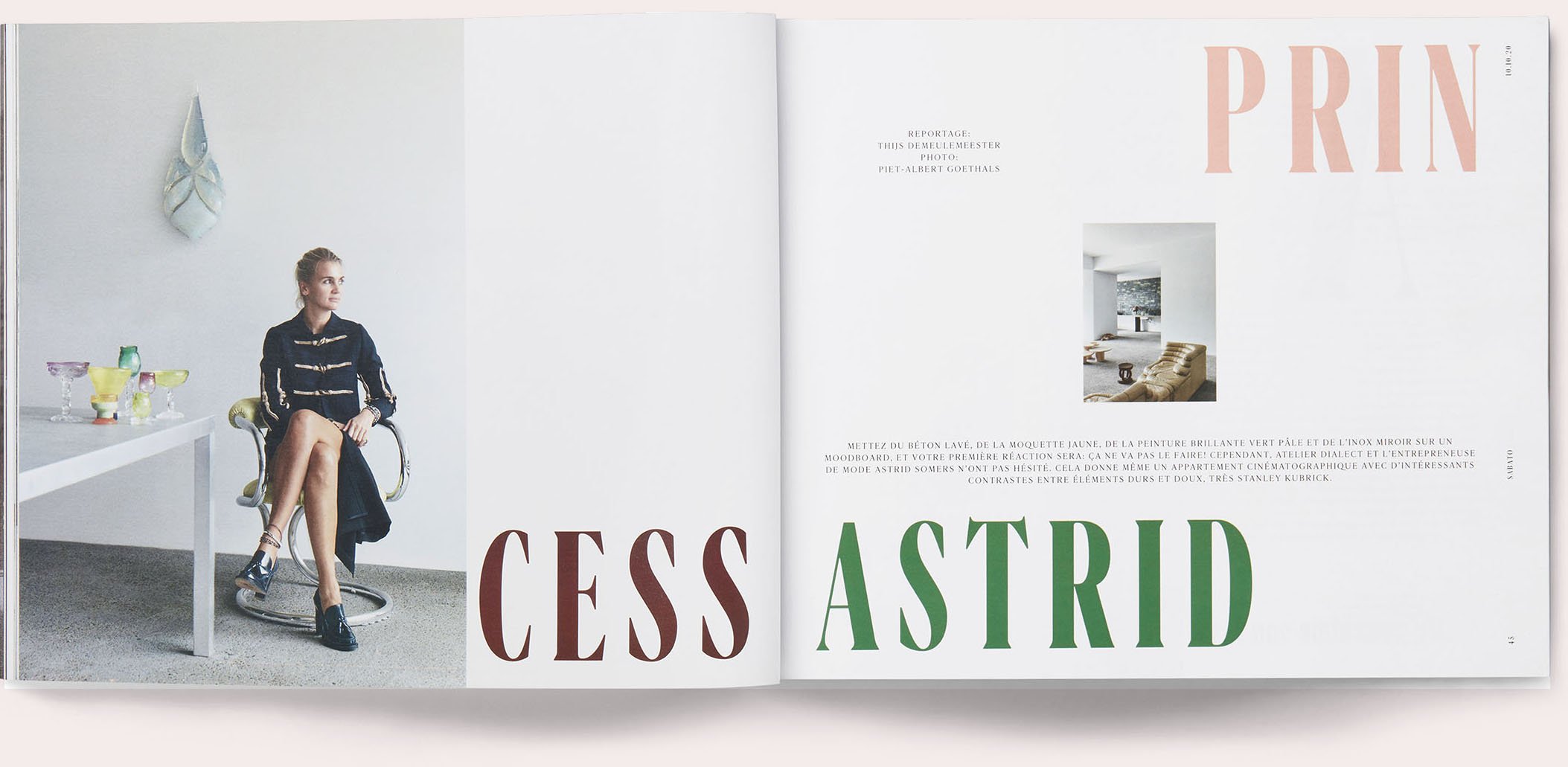
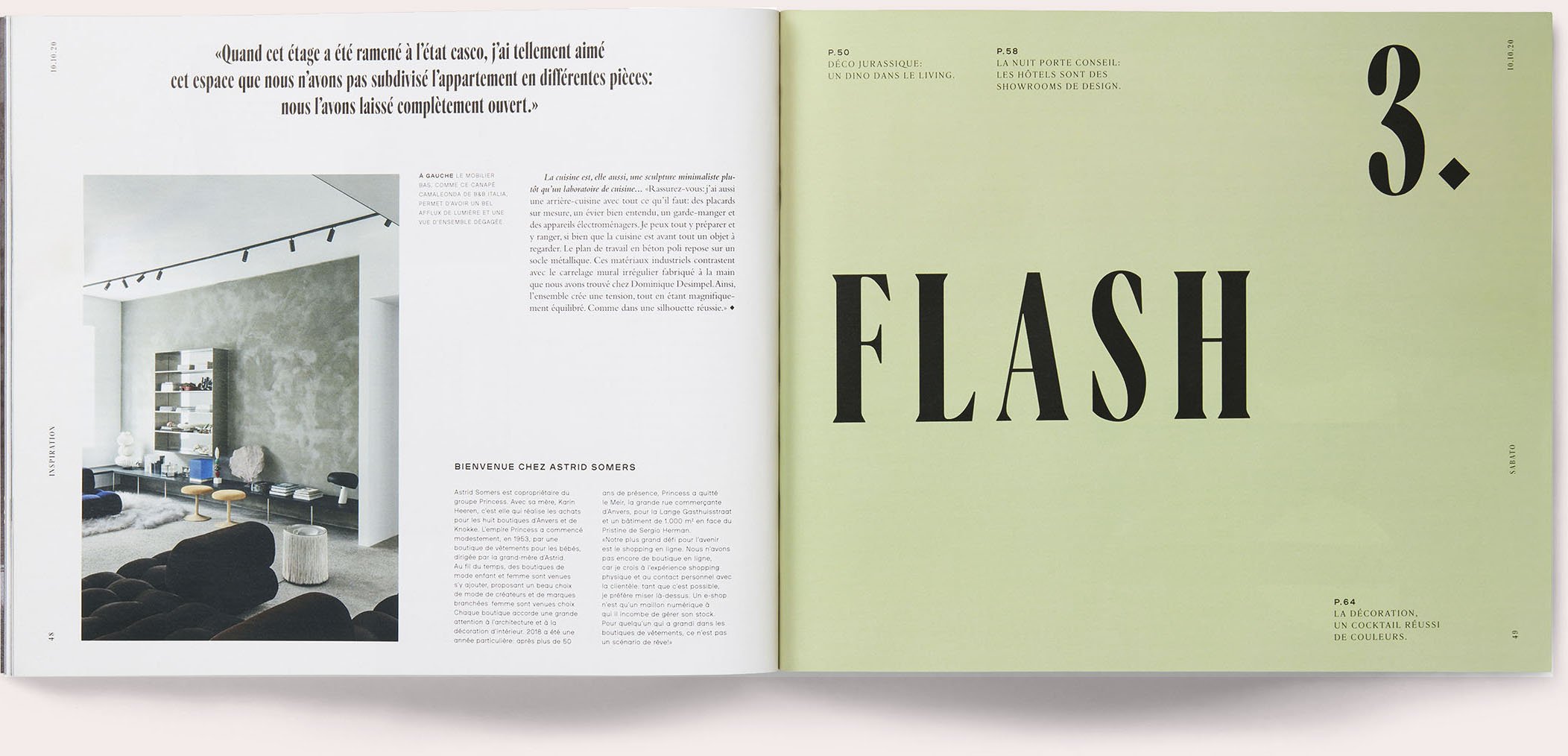
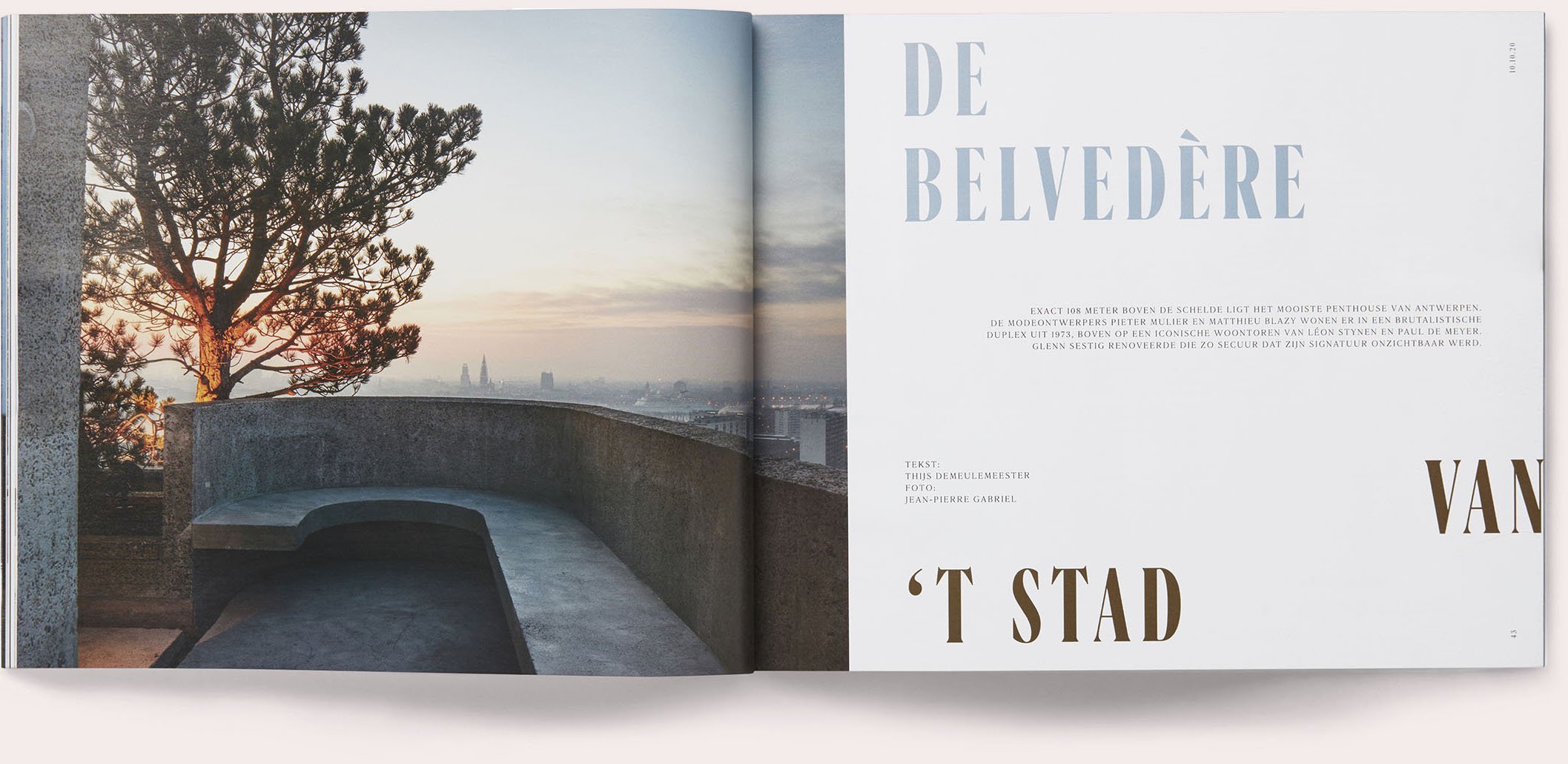
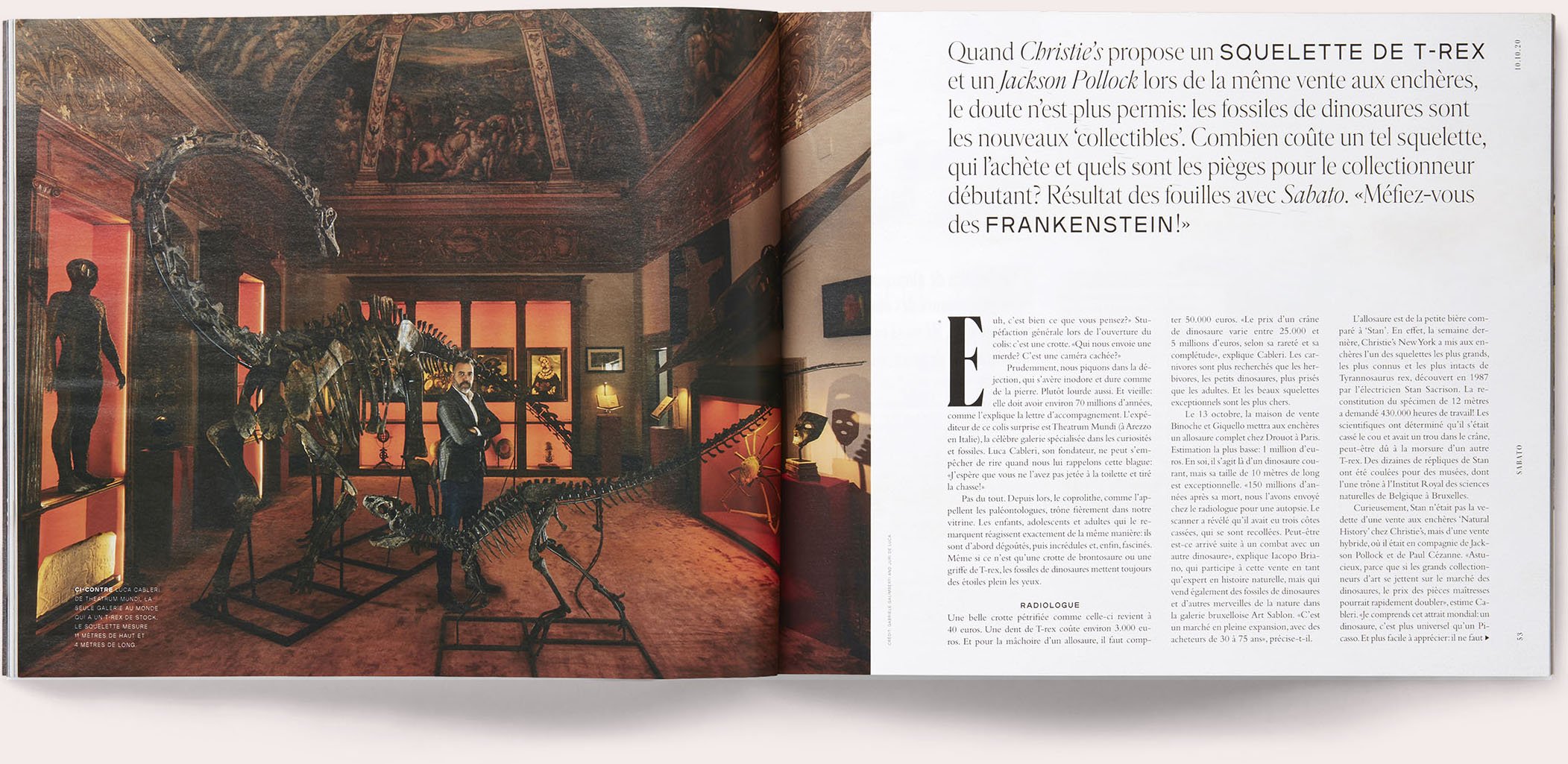
Patrick Mitchell: Well, that is the thing, from what I understand, what separates the people who make it there from those who don’t, is that ability to not only bring in business, but handle the pressure of being responsible for bringing in business. In addition to doing great work.
Alex Hunting: Yeah, yeah. No, I bet. The whole business, it’s a whole other equation, isn’t it? And it’s the size of those brands, isn’t it? Because, you can run a very successful small agency where you are super hands-on and handle everything. But then when you start dealing with those huge clients—I can’t imagine what that’s like. The pressure. The insane pressure.
But yes, I would, obviously. That would be amazing. Amazing. I remember reading Vince Frost’s book. I don’t know if you read it, but he was, like, the youngest-ever Pentagon partner. But I remember he, pretty much, didn't like it that much and he much preferred running his own thing.
I’m sure there’s lots of people that go into it who run their own thing, who realize that they probably preferred it, but you just can’t say “no” to it, can you? That’s the thing.
Patrick Mitchell: Yeah it’s really an interesting thought. Note that we’re two people who, to this point [laughs], haven’t had the invitation to go work at Pentagram yet. However, that said, I would say from your output, and I know from my job satisfaction, I don’t need big, giant brands to make me proud of my work or feel successful. I’m just doing, as you look like you’re doing, a lot of work that just makes you very happy.
Alex Hunting: For sure, for sure. I guess you’re still your own boss there though, aren’t you? Which is the one thing that you hold onto, right? Like you’re still, you are your own boss, even if you’re at Pentagram.
Patrick Mitchell: Well, but then you have the collective air conditioning bill, and the lighting bill, and the plumbing bill, and the employee payroll, and all that stuff.
Alex Hunting: Yeah, true, true, true.
Patrick Mitchell: All right, let me shift gears a little bit. You talked about Matt Willey and Jeremy Leslie, two noted, important magazine designers and thinkers and makers. Along those lines, when I was at Fast Company, we used to talk about the value of having mentors. We used to call it your “personal board of directors.” Who’s on your board? Who do you turn to for advice?
Alex Hunting: I speak a lot with a pal of mine, Charlie [Hocking], who I went to college with. He’s a brilliant designer. He was a design director or motion director for Design Studio. Do you know Design Studio? Like the big London branding agency. But anyway, at college he was always just a brilliant designer. We are super good friends. And I’ve always really, really trusted his opinion. He doesn’t work in editorial design, but he’s just got really impeccable taste. So I speak to Charlie a lot about stuff.
I’m good mates with a guy called Kuchar Swara. He was the art director of Port—he founded Port with Matt Willey. And he’s the creative director of The Telegraph now, which is one of our national newspapers. He’s an amazing editorial designer. I speak a lot with him. And then I run a lot of stuff past my girlfriend who, again, not a designer, but she’s a set designer.
I do think it’s super important to do that stuff, particularly because I do run my own thing and because I’ve been doing my own studio for quite a long time now. I did work for a couple of places, but it was only for a few years really. So it is important to get outside of that, I think. To not think that you know it all, or ...
Patrick Mitchell: ... have to have all the answers...
Alex Hunting: … Yeah. Yeah, definitely. I’ve got a few mates that—I’m sure it’s the same in the States—there’s a little London, sort of a bit of an editorial design scene. Like we go to Type Tuesdays, Eye magazine does a lot of talks, and there’s a lot of things we go to. And I’ve gotten to know quite a few people there.
So there’s a lot of magazine people that I chat to about things. I do think it’s important. And the mentor thing was massive for me. As I said, you know, I owe Jeremy a huge amount for pointing me in that direction. Matt as well. I learned so much from Matt. I didn’t even work with him for very long at all. I interned with his old studio, Studio 8, just after I’d graduated. And Matt was only there briefly because he was working at Frost. He was doing a kind of, not sabbatical, but Vince had asked him if he wanted to be a creative director there for a bit. So he was only in the studio for a little bit. But we worked on a magazine called You Can Now, which was the magazine that the first studio I worked for published. And Matt did the initial design and then I did a couple of the subsequent issues. So I worked with him on it.
And you just learn so much from seeing someone like that up close. Just how they do layout, after layout, after layout, after layout, to get to something that’s great. And particularly people that have got a lot of time and patience for you, which Matt always did.
So yeah, I owe him a hell of a lot. I think it’s really important, the mentor thing.
“There’s a huge amount of dross in the independent magazine world as well, right? There’s some total crap out there.”
Patrick Mitchell: Who’s on your team at your studio? Are you a solo act?
Alex Hunting: At the moment there’s only me and two others. But they’re pretty much always freelance—not freelance, but it’s normally like three-month or six-month contracts.
Because we don’t only do—obviously, I know we’re mainly talking about magazines—but I do a fair bit of branding and digital design as well. So it depends on which projects are in and whether there’s, like, a web developer working on something for a couple of months, or it’s a branding designer, or a motion designer. That sort of stuff.
I’d say the most people I’ve ever had was probably five at one point. But sometimes it’s me between freelancers and sometimes it’s me on my own for a bit. So it sort of goes up and down really. I’ve constantly been struggling with that: what constitutes success?
When I first founded the business, I set out to think to myself, “If I don’t have 20 people working on projects in the next few years, this isn’t a successful business.” And, I’ve very much fallen away from that idea now.
But it’s constantly thinking about, “Are we doing the right work? Do we want to grow the studio? Does that mean we’re doing better work? Or does that just mean we’re doing more work?” I don’t know. I think it’s a bit of a struggle really. But I think everyone probably goes through that. What type of work to do to fund staff, and whether you need a bigger space, and all that stuff.
Patrick Mitchell: I don’t want to get too nitty gritty, but I do want to ask, say a new magazine comes in. What’s your process for producing—so it’s a brand new design that doesn’t exist. You’ve got to create a redesign and launch an issue. Can you touch on the bullet-point process that you go through to get a new magazine up and running?
Alex Hunting: Initially it’s all type. It’s like type research, basically. Sometimes when something comes in, you can just see it in your head. You think, “Oh, it should be like that." And you think of references and all that sort of thing. I try not to look online a huge amount. I’ve got loads and loads of old archived mags from the sixties, seventies, eighties, nineties— all sorts of mags.
But the process, I guess, of tight pairings is the thing that I think about, which I guess everyone does. What’s going to give it character, what’s going to give it his identity? What are those elements?
Patrick Mitchell: I’m thinking more in terms of working with the clients. Do you find that your portfolio helps you fly through the presentation process a little more easily than it might in a design studio? Do your relationships come in where you have an understanding that you’re not going to have to go through round after round after round, and show option after option after option of look and feel?
Does it go that way? Or does it go more organically and more fluidly?
Alex Hunting: Most of the time clients that approach us, they approach us because of something that we’ve done. And so you can pretty much gauge, pretty confidently, where something should be in its visual direction.
We definitely do get stuff rejected. I tend to not show multiple routes. But sometimes if I’m not sure or if there’s a couple of things that we are working on that think is working well, then we will. I used to be way more precious about when stuff got rejected.
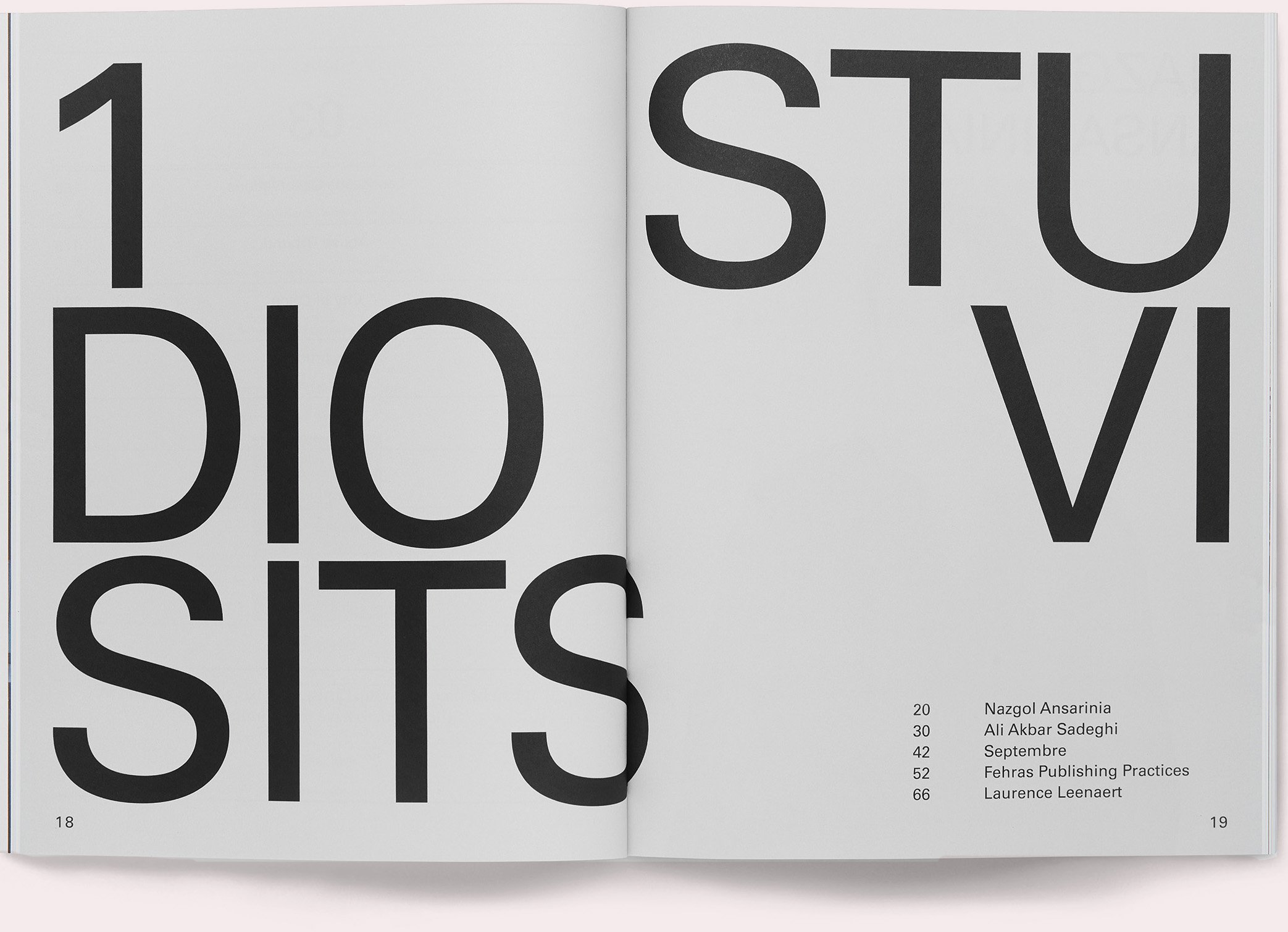
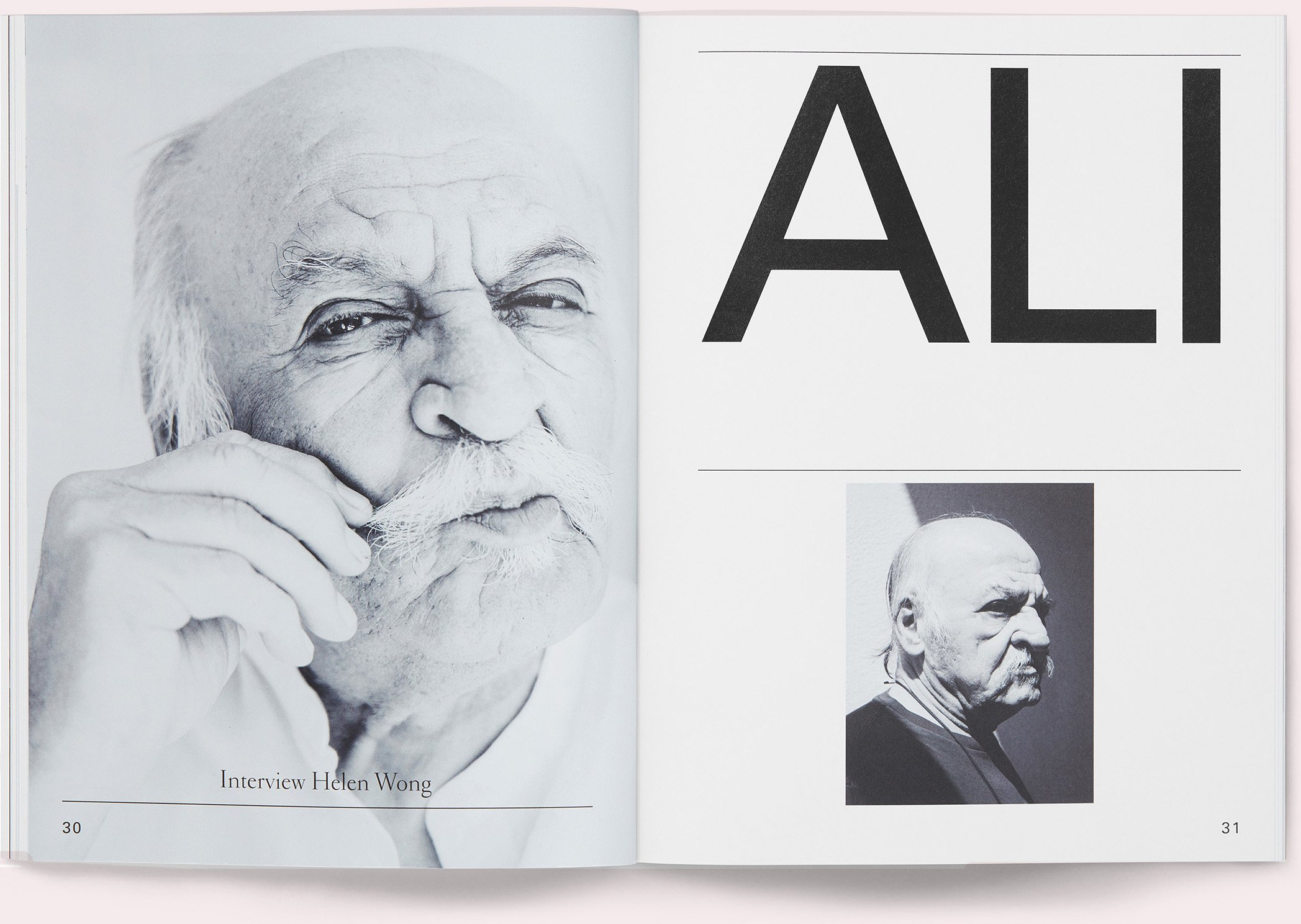
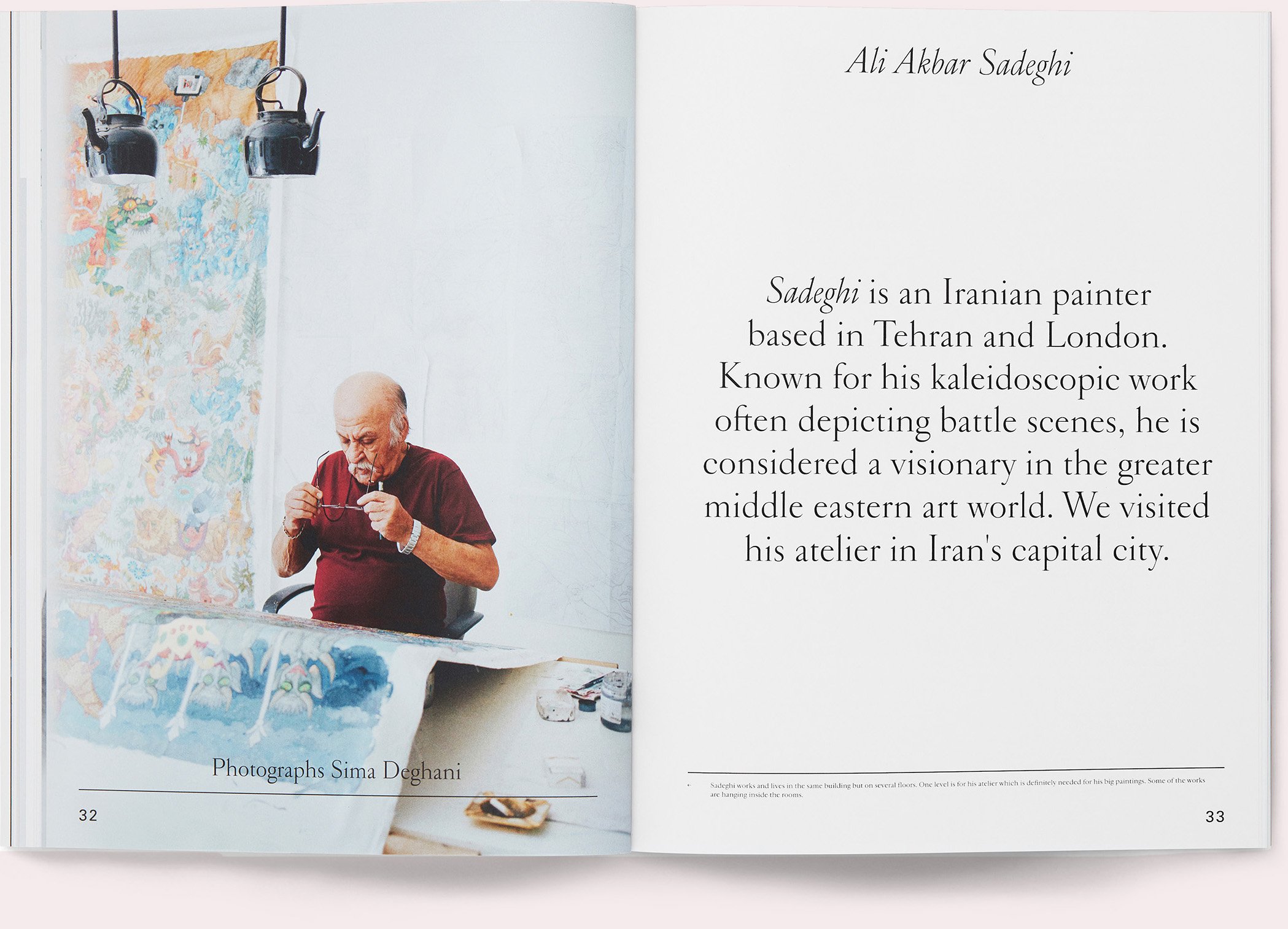
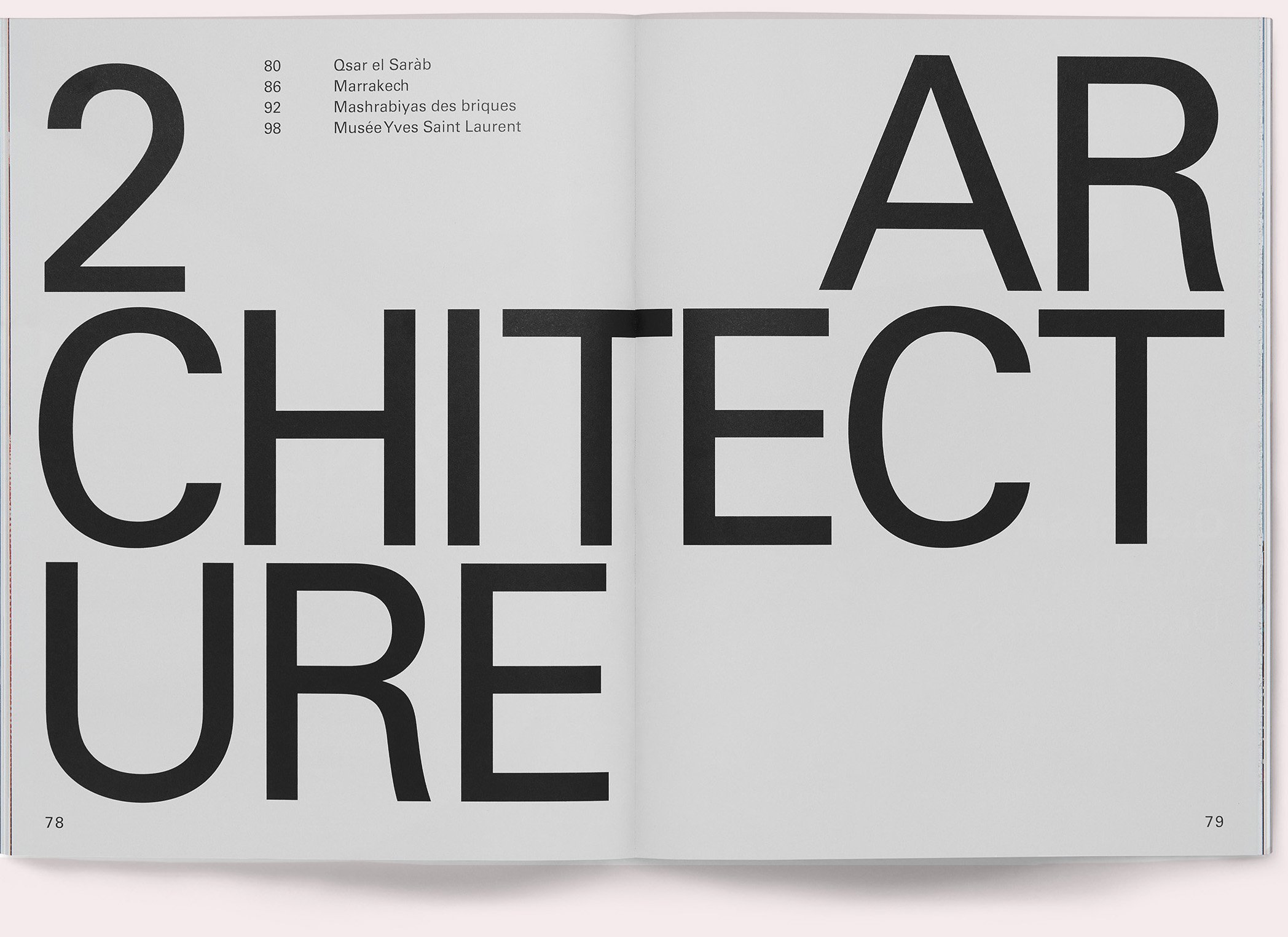
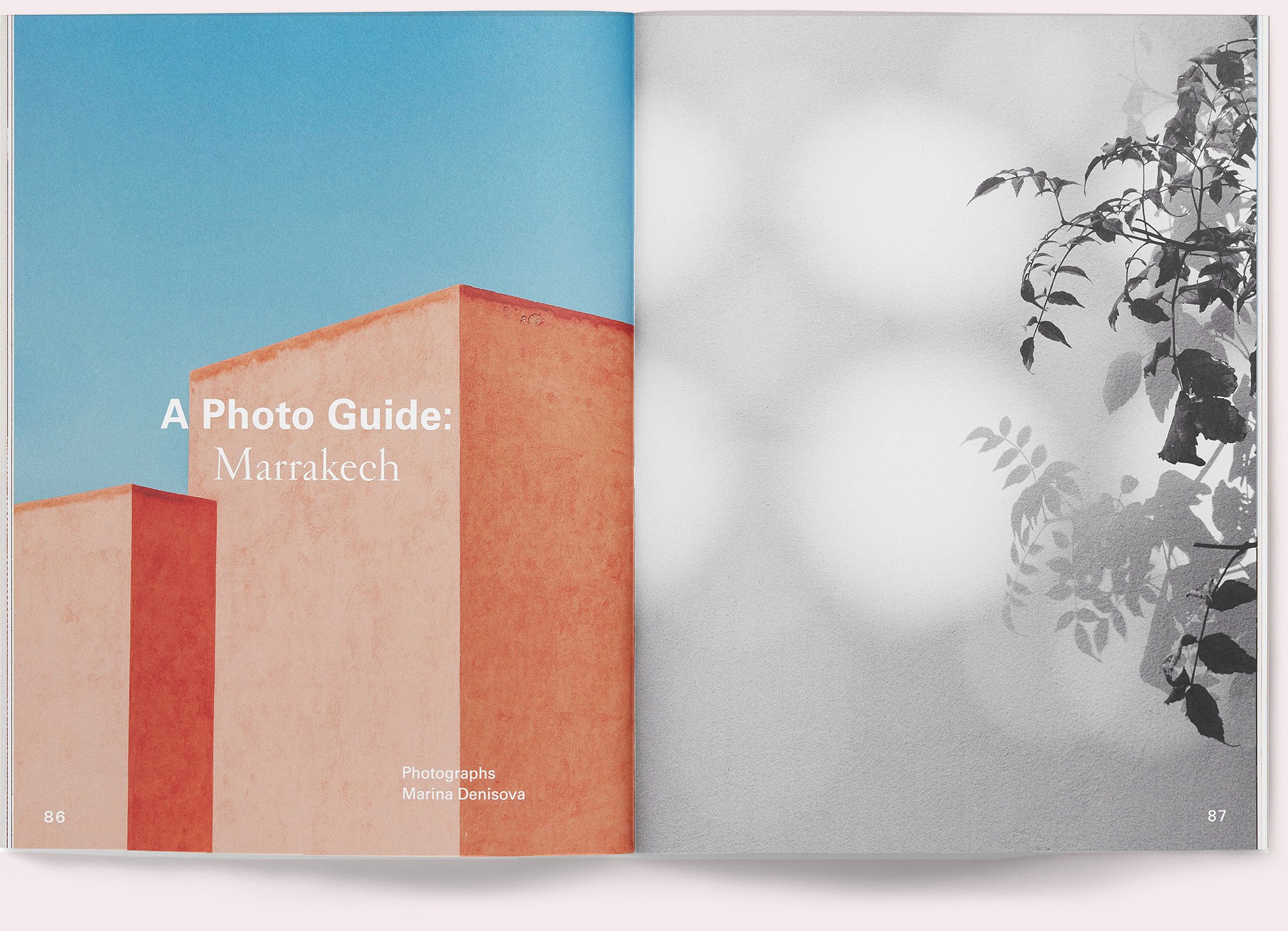
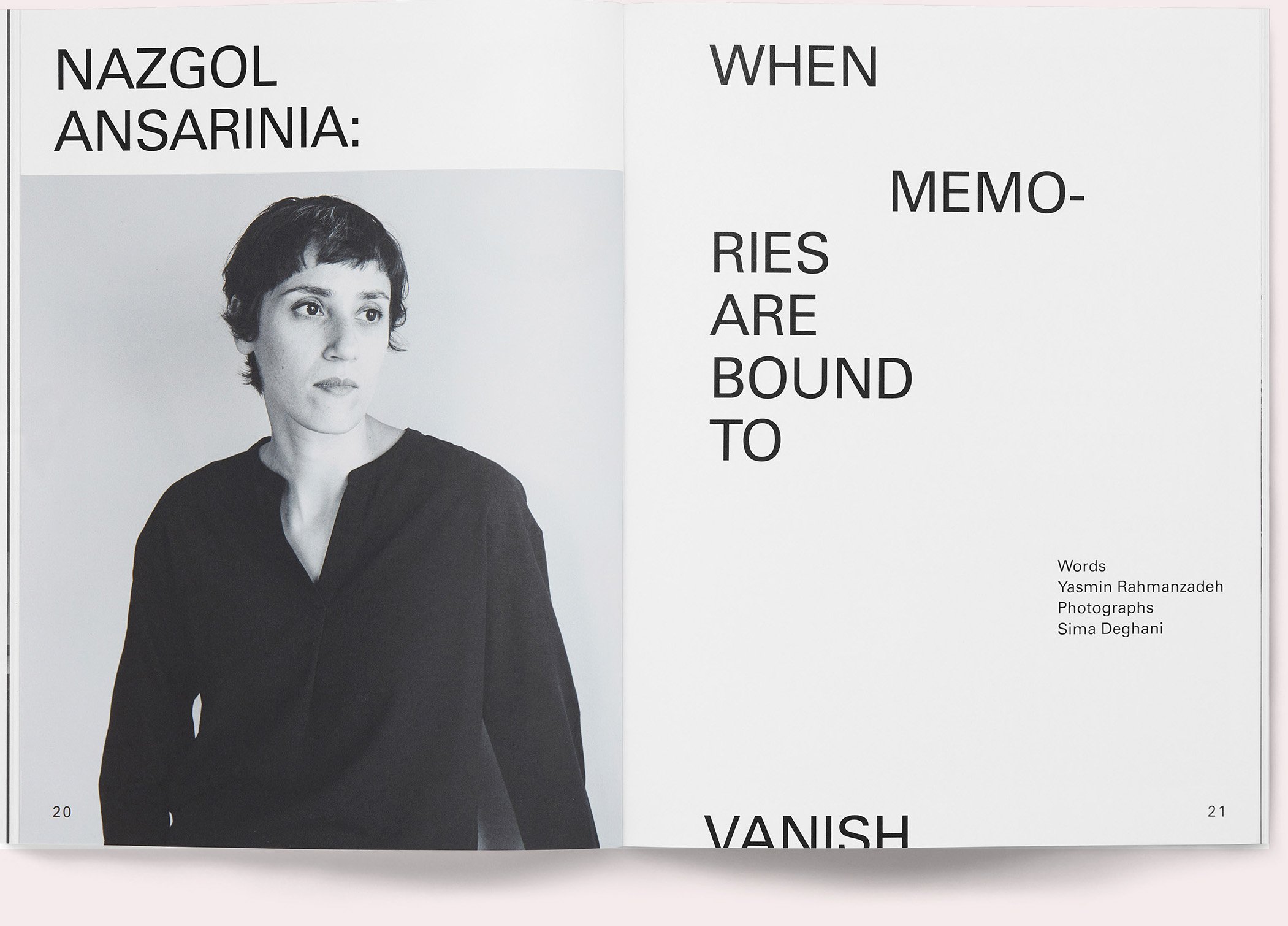
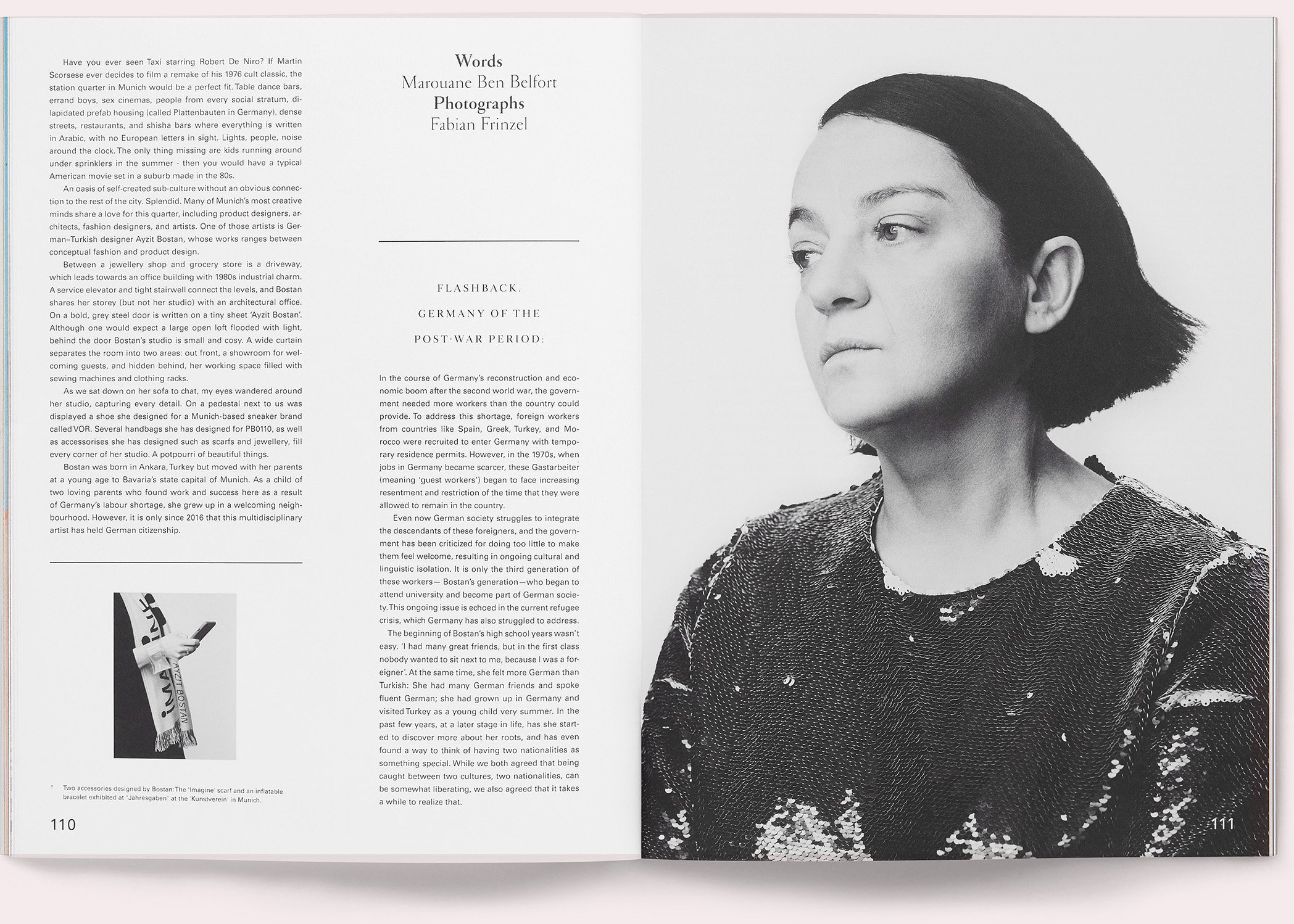
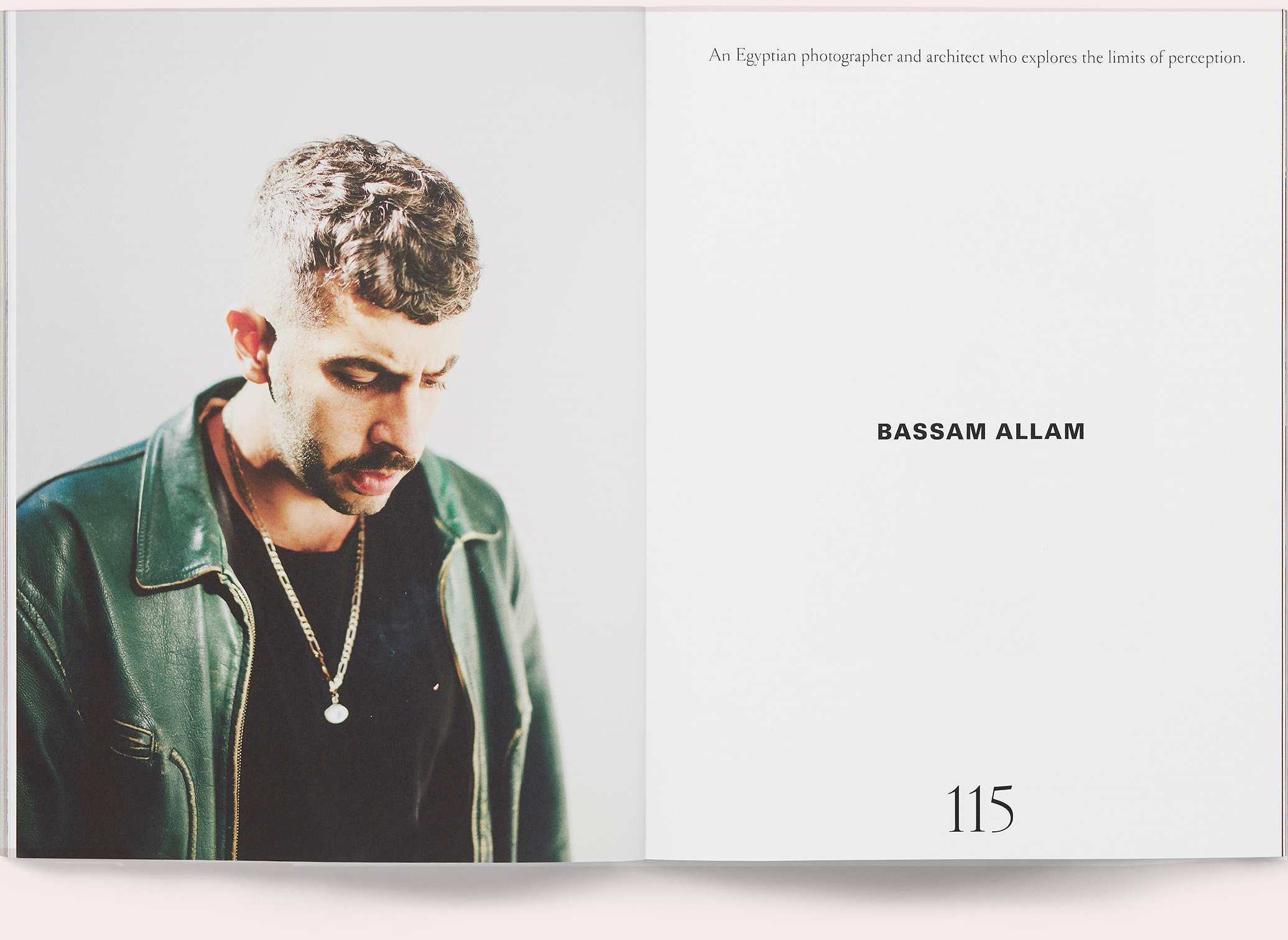
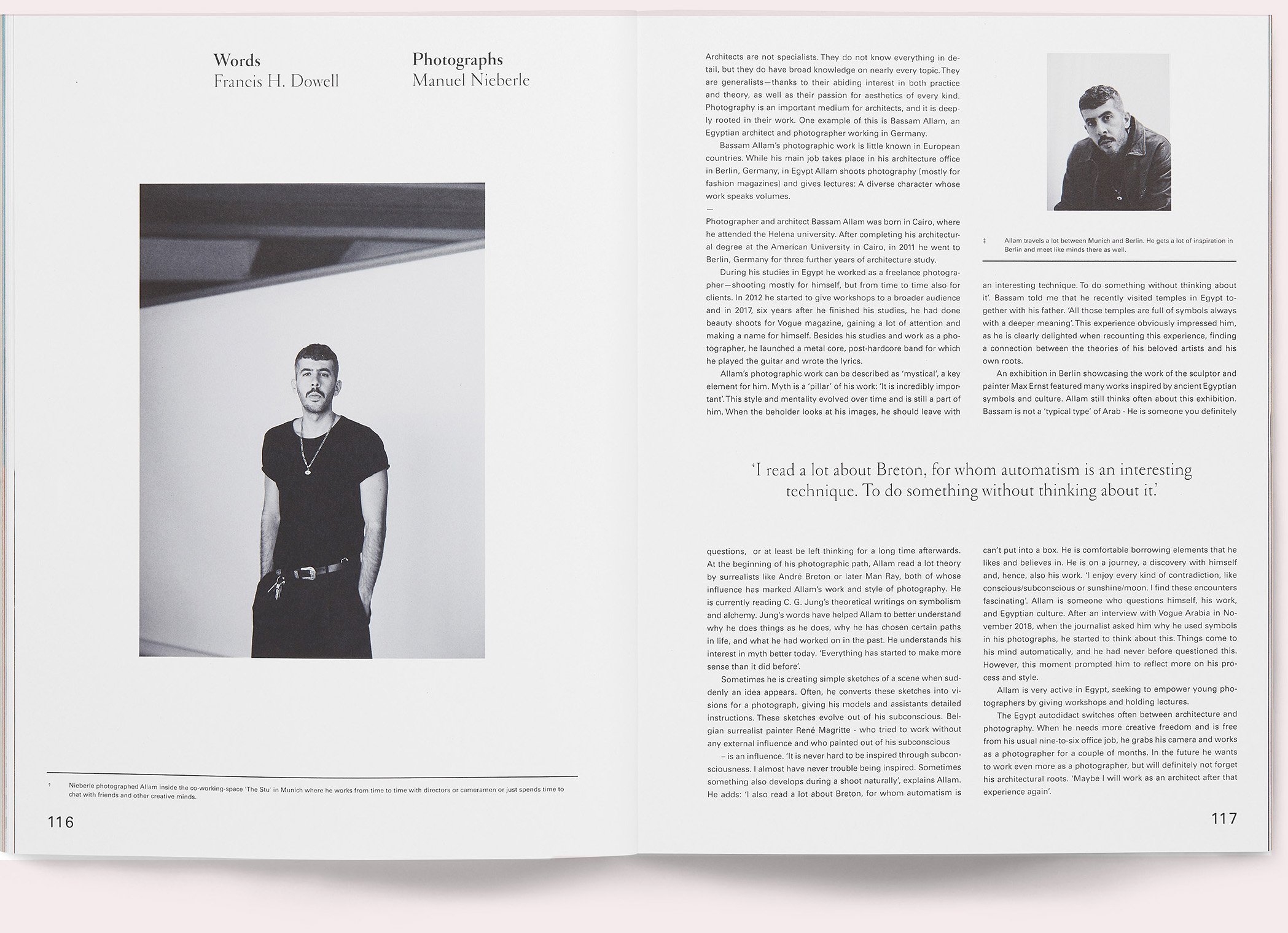
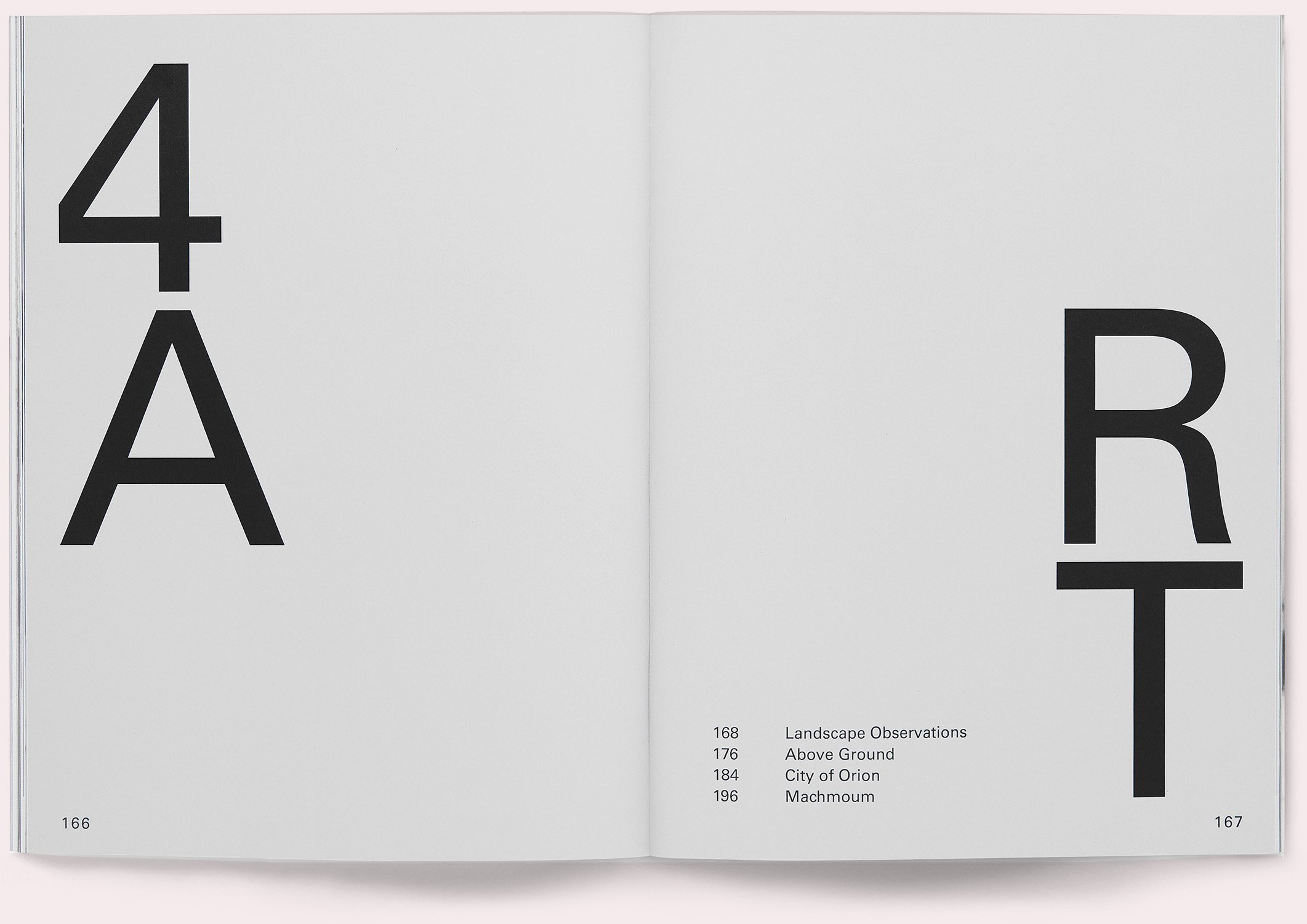
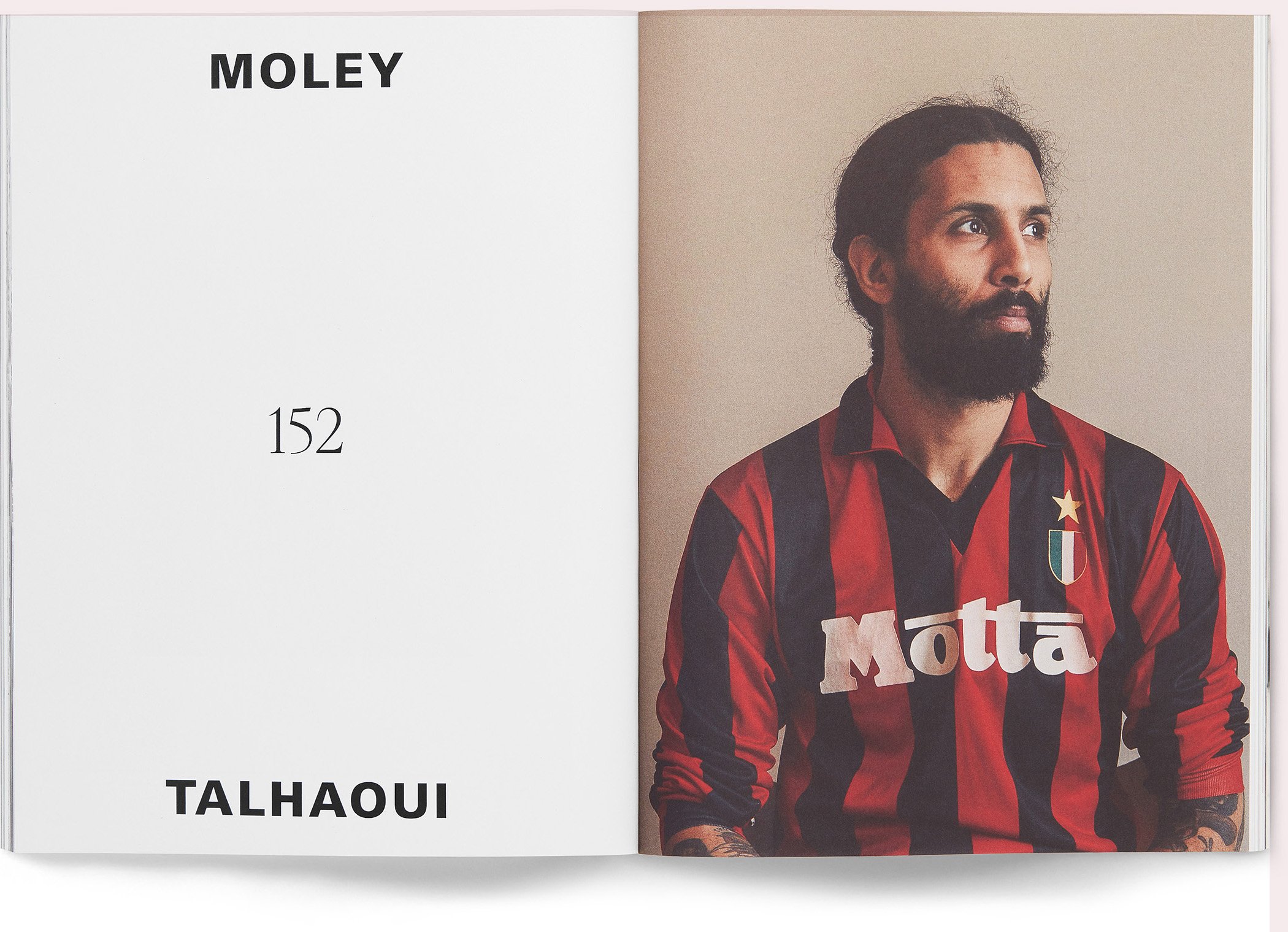
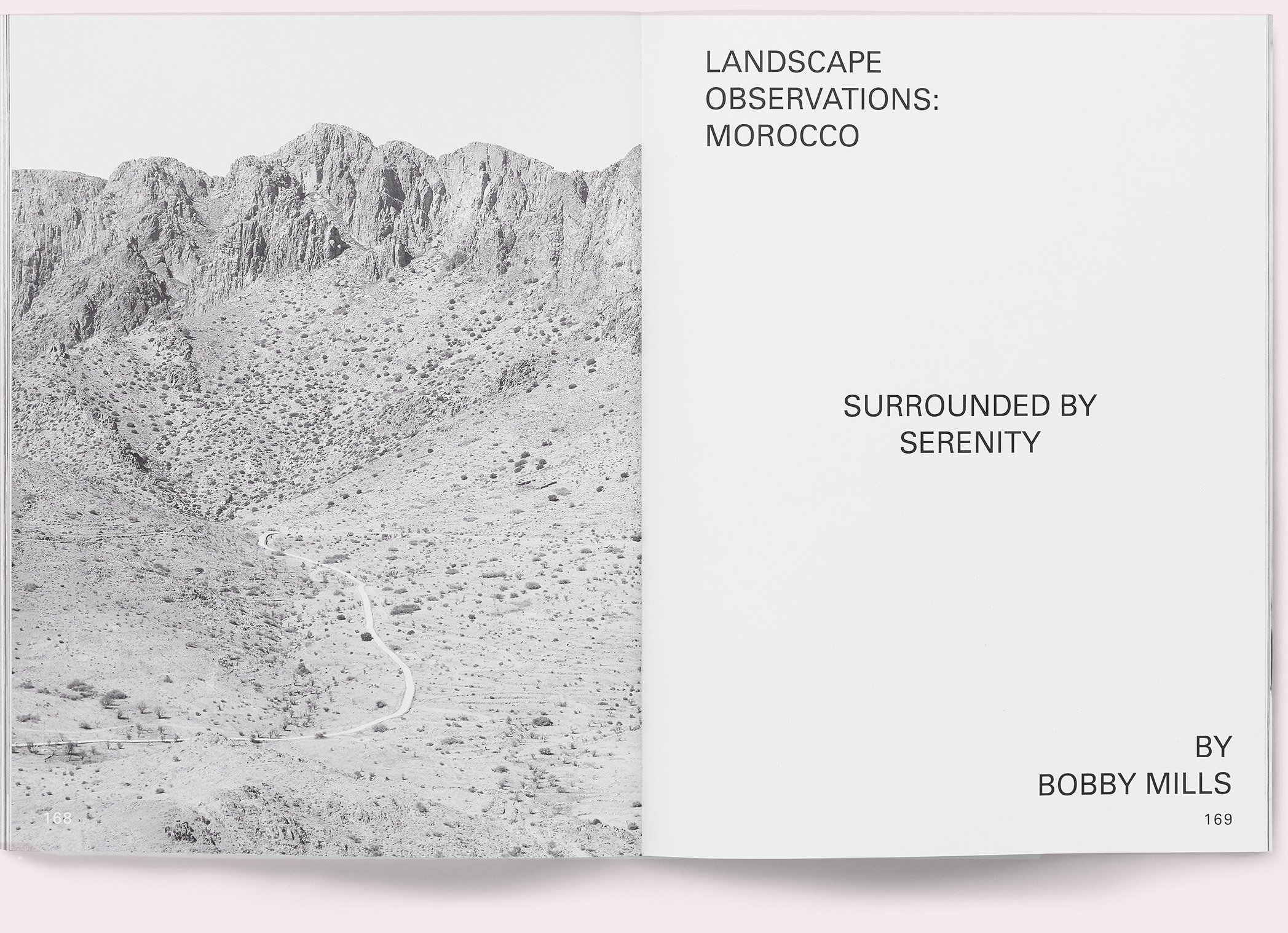
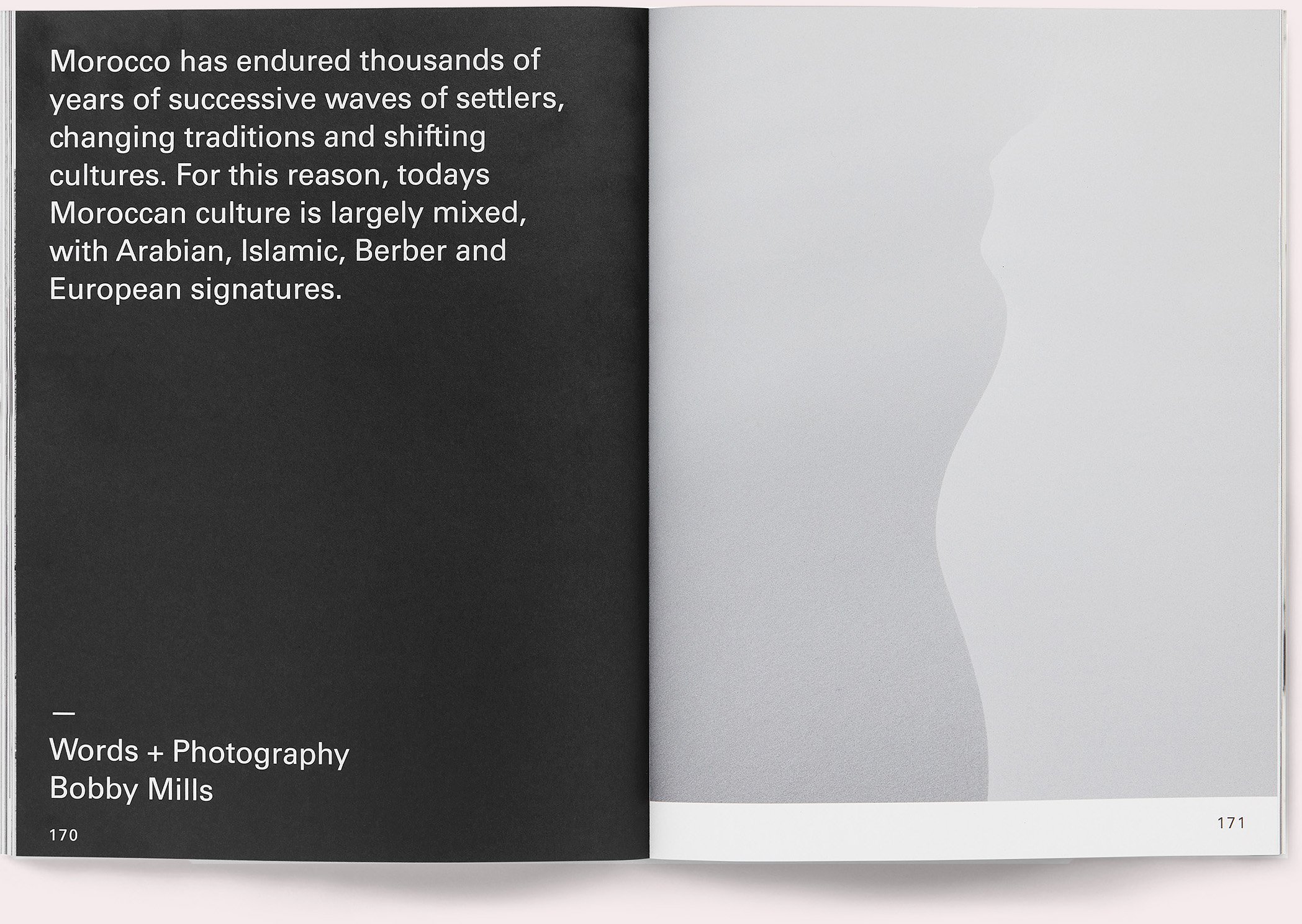
Patrick Mitchell: Because you’re a millennial?
Alex Hunting: Yeah, probably, yeah. I’d just, I’d have a bit of a tantrum or whatever to myself and think, “This is ridiculous.” But you know, the reality is that I’ve totally grown to realize that, ultimately, you almost always end up with something that’s better. Or, like, I find it because I challenge myself so much more after that’s happened.
And also the client, a lot of the time, most of the time, they are right because they know what they’re trying, they know the magazine might look cool to you, but it might not be the appropriate thing. So I’ve become much less precious about that sort of thing.
And I think it does end up leading to good work. Plus you can also leave all those excellent little ideas in a drawer and come back to them for something else.
Patrick Mitchell: Do you find yourself getting involved in editorial conceptualization in terms of like, creating new departments, or branding departments, naming things? Do you do all of that stuff too?
Alex Hunting: Yeah, in terms of formats and that sort of thing. It totally depends on the magazine. If we are doing something from scratch we’re often creating packages around how we can best show this sort of imagery, and this would go well with this sort of shorter storytelling, or this section’s like bitty-er stuff, or all that sort of thing.
If it’s a magazine from scratch, we tend to do a bit of that. Not lots of it. But a lot of the clients that we have are normally really great and they’re often asking—they want to be, they’re really design conscious, a lot of them. They want the design to be as good as it can. They want the design to help inform, how some of those editorial, how a lot of those formats are going to be. So yeah, we do do a bit of it. I’d like to do more of that.
• • •
Patrick Mitchell: We’re going to shift a little bit now. I want to talk about Kinfolk. You’ve done a lot of work with the people at Kinfolk. How did that relationship begin?
Alex Hunting: I got approached by Nathan Williams, who’s the founder. He got in touch with me in—I think it was 2016. Something like that. And he didn’t actually get in touch with me about Kinfolk. He’s the founder of Kinfolk. Kinfolk was initially based in Portland, and it was a massive US success story in the indie world.
And they moved their headquarters to Copenhagen, Denmark. And it was a kind of slight repositioning of the magazine and the company around being a bit more for an international design audience—as opposed to necessarily just like a West coast, slow-living kind of vibe.
And they were going to start a new magazine, alongside Kinfolk, which was going to be an interiors magazine. And Nathan had seen what I’d done with the Rapha magazine, which is funny because it’s not particularly interiors-y, but he’d obviously liked something in the design. And he asked me to come over to Denmark and meet him and have a chat about it.
And so I started working on the concept for this new magazine. And um, loved it. It was really great. I really got into the process. Anyway, I remember we were quite deep into it and he just sent me an email one day saying, “Yeah, we’re not going to do it. We’re not going to do it, but would you be interested in redesigning Kinfolk?”
So, yeah, obviously, I jumped at the chance to do it. And it’s actually a shame that the [first] mag didn’t happen because it’s one of those ones which I was so happy with the design, you know, the initial mag we were working on. And actually, redesigning Kinfolk was a much more difficult challenge, because of the baggage that comes with it basically.
So it started there. And I did the initial redesign in 2016, and then redesigned it again beginning of last year maybe, or just a bit before. And yeah, it’s been amazing. I guess it’s been six years, really. And they’re just the loveliest team. Amazing editor. Just a whole amazing team. The kindest, nicest people. I mean, actually out of every magazine I’ve been involved in, anywhere, it’s the most organized, slickest operation I’ve ever experienced. So yeah, it’s great.
Patrick Mitchell: Nathan is no longer with Kinfolk, right?
Alex Hunting: No, no. He left a couple of years ago.
Patrick Mitchell: And so who owns it now?
Alex Hunting: It’s part owned by a Korean investor. It has Korean investors. I mean, Kinfolk is massive in Asia. So we still do a licensed Korean edition, Japanese edition, and we have a concept space in Seoul, South Korea. It’s got a massive audience there.
Patrick Mitchell: Is the editorial team still in Copenhagen?
Alex Hunting: Yeah. It’s exactly the same in terms of the mag. All based out there. Although increasingly British, actually. The editor-in-chief [John Clifford Burns] is British, the editor is British [Harriet Fitch Little], and I’m British. The art director, Christian [Møller Andersen], he’s Danish. And there’s an in-house art director as well, Staffan [Sundström], who’s Finnish. So there is a “Scandi” element to it. But there’s a lot of Brits involved.
Patrick Mitchell: I think about Kinfolk as one of your “name brand” clients and, I guess it is a name brand. But it’s a sign of the times that it’s a global brand with a circulation of, what, 80,000? Yet it is by far—and I say by far—one of the great success stories to come out of the indie mag boom of the early 2000s. And you’ve worked for a few of these.
Can you talk a little bit about your perspective on indie magazines? Jeremy [Leslie] has this amazing little shop [magCulture] in London where he focuses on shining the light on the best of the indie magazines—in the world of print publishing, indie magazines really are one of the positive lights. Most of the news coming out of our business is bad, but exciting things, good design, things like that, are happening with indie mags. Is that something that is going to continue to grow?
Alex Hunting: Yeah. I always find it amazing that I often get people—I had someone the other day apply for an internship and they were studying architecture, but they just really love the idea of working in magazines, and can they come and intern. I was thinking, “Don’t be a fool! Continue with the architecture!” But it’s amazing. I’m still of that generation of pre-mobile. Pre-digital as well. Just, just about. So magazines were a big thing for me growing up, because they were—I mean, I think they still are—they’re culturally significant things, right?
It’s where you get your subcultures, like skateboarding magazines, music magazines, all that sort of stuff. And I think they’re still massively important in terms of defining that sort of—I mean, nothing’s really taken that place.
You obviously have digital websites, blogs, and social accounts that are massive, that basically operate as magazines. They are magazines. But it’s amazing the kind of cache that they still have, the printed stuff. There’s a huge amount of dross in the independent magazine world as well, right? There’s some total crap out there.
But it’s the luxurious element of it—the fact that some of them might only exist for one or two issues and disappear. In a way that’s what makes a lot of it exciting, right? Because basically people do what they want and sometimes they get picked up and lots of people read them, and a lot of the time people don’t.
But they still have a sort of a purpose, don’t they? And I guess most of that was a reaction against the fact that the newsstands—just that whole world has just been falling apart.
“I think that the most interesting space—and I’m slightly biased about it because I had such a great experience working on the Rapha magazine—but I think that “brand” magazines can be one of the more exciting spaces for the industry.”
Patrick Mitchell: They tend to spend a lot of money on paper and printing. And it’s funny, because when you walk into a newsstand that has a lot of indie magazines, you would think that design is going to be a really big part of it. And I’ve tried to figure out what’s really happening there, because you open them up, and the design suddenly isn’t that great. There’s a lot of white space. It’s very precious. It’s small titles and centered text. They look like books. They’ve got nice photography. But there’s no “editorial design” once you get past the cover.
And I don’t know if Monocle is considered an indie mag. I guess it’s not from a “big” magazine publisher. But I tend to think of Kinfolk and Monocle as two success stories of magazines that started in non-traditional ways. And also, ironically, both supported by Asian partners. Nikkei owns part of Monocle, and as you said, a Korean company owns a big chunk of Kinfolk. Or all of Kinfolk.
Alex Hunting: I totally agree with the design thing. I think a lot of it is because, in all those indie mags, there’s so many editors. They’ve always been a space for writers, right? You know, the literary-type sector. There’s a whole creative space of people desperate to start magazines that aren’t designers as well. I’m always amazed by that.
Obviously there’s loads of magazines which, kind of, they’re just put together by people, so some of the content might actually be great, but it’s not guided by a designer. I think that the most interesting space—and I’m slightly biased about it because I had such a great experience working on the Rapha magazine—but I personally think that “brand” magazines can be one of the much more potentially exciting spaces for the industry.
I really believe that because I think that the right brand, with the right kind of storytelling can often make so much sense. Because so much of the problem with newsstand magazines is like, this advertiser, that advertiser, this person’s got to be on the cover, all this sort of stuff. And so much of that stuff goes out the window with the brand magazines, because it’s essentially just a marketing expense for the company. They can spend quite a lot of money on it.
But if the brand’s great, and the brand’s got good values, and it’s got amazing editors, and amazing designers, I think lots of brands can see the value in it. And it shows you, it still 100% has that—it’s often the high point of a brand’s editorial output, isn’t it? It still is that physical thing. So I think that’s a relatively exciting space still.
Because there’s often with, if it’s like a particular kind of brand—so obviously with Rapha, the magazine’s a cycling magazine, but it had a brilliant editor, had an amazing in-house art director, Jack Saunders, who’s just an incredible creative mind to work around.
And the storytelling around cycling was so exciting—the sort of stories you would never see in a traditional cycling magazine. But brought to life with amazing attention to detail in terms of the production, the photography, all this sort of stuff, because the vision of the company is great.
And there’s plenty of brands out there where you could see that could be an amazing thing, you know?
Patrick Mitchell: And they wouldn’t have the pressure, like if Hearst launches a magazine, well, that means it’s got to come out monthly, and it’s got to get a certain number of readers, and a certain number of advertisers, and become a business. Rapha can decide to do a magazine, because it’s a great format for a certain thing, and do six issues and call it a day. And it’s a success.
Alex Hunting: Exactly. Exactly. So yeah, I love the indie mag scene. And I think it’s brilliant. And I guess that’s why I’m still doing what I’m doing, really. As I say, it’s from going to that independent magazine festival all those years ago. So yeah, I love it.
And I’m still amazed. I keep thinking it’s going to die down really. But it’s just constant, isn’t it? New titles, new titles, new titles. I think it will die down because printing has just gone completely insane. The cost of printing. It’s just, it’s next level now.
But then, I guess digitally, there’s always ways around it. I’m sure people will find a way to keep publishing stuff.
Patrick Mitchell: Has your relationship with Kinfolk led to more work?
Alex Hunting: Yeah, definitely. Definitely. I mean, people have approached me just because of working on that title. It’s also led to some really nice—I’ve got a few Danish lifestyle-y clients. Furniture or homeware, that sort of stuff. Stuff that’s in that world in that Copenhagen little bubble. So yeah, it’s definitely led to stuff.
And we’ve also done another mag with Kinfolk as well. I’ve worked on a couple of the books and all sorts of stuff like that. It’s been a really fruitful relationship.
Patrick Mitchell: So you get a lot of work from word-of-mouth. Do you do actual biz development to get new work? Or do you not need to do that?
Alex Hunting: Yeah, I’ve definitely done it over the years. I think the hit rate has got to be under 5%, or something. I used to do these really big send outs where I’d send a fresh issue of every best thing that we’d done to the marketing director or the so and so of loads of particularly niche companies we really wanted to work for.
I think once it worked. I think. And I try to get in front of people. Like I do try to meet people. But I’d say the vast majority is word-of-mouth. Or not necessarily word-of-mouth, it’s just, you do a project, someone sees it, they like it, they want something like that.
They get in touch. So I do a bit. It’s probably 20% new business, I guess, 80% word-of-mouth. But often that means the work dries up.
Patrick Mitchell: Well, I can relate. It’s almost impossible to be an effective business development person as the person who also has to do all the work that you get.
Alex Hunting: That’s definitely the job that I need, really, that I do need to hire. Much more kind of a project management/new business type of job. I’ve been thinking about that for so long. It’s such a key part of the business.
My dad used to always say that. He said, “You should always be spending 25% of your time, at least, on generating new business.”
Patrick Mitchell: And what percentage do you spend?
Alex Hunting: Definitely not that! Definitely not. Two percent, three percent.
Patrick Mitchell: So you’ve accomplished a lot at the tender age of 35. And you’re so busy, I imagine it’s going to be tough to answer this question, but how are you thinking about the, say, the near future in terms of you, your business, your life, all of that stuff? Just keep plugging or do you have wider goals?
Alex Hunting: Yeah, I don’t know. I was saying to you earlier, I’ve just had a son. Well, he’s 18 months now. So that’s been quite a preoccupation where I’ve been keeping my head above water in general. Just working, keeping the business going, trying to do good work, and trying to spend time with him a bit, and all that sort of stuff.
So, I think, for the near future, it’s just carry on as is, really. For a bit. And I always always say this, but I would like to grow it a bit. I would like to grow the studio a bit in terms of—I’ve had some great designers in recently and there've been some really great relationships with some of them. And I’ve not been able to offer them a job at the end of their freelance contracts. And I’ve wanted to, and that sort of thing. I’ve let quite a bit of talent actually fall away, which has always been quite gutting. So I’d like to be in a position, do you know what I mean, to have a bit more of that.
But apart from that, no, just try and do as much good work as possible. Really. That’s it.
Patrick Mitchell: All right, we call this The Million-, or Billion-Dollar Question. I guess it depends on how big your ambitions are. But let’s say Jeff Bezos called you today and said, “Alex, I’m going to give you a blank check. The only stipulation is you have to use it to create and launch a print magazine. Money is no object.” What would you make?
Alex Hunting: Oh. Um. Cricket Magazine? No, I was thinking about that. I would love there to be a decent cricket magazine, but the imagery would just always be too, too, too rubbish. I’m a big cricket fan, so that would be good. But it’s just, it’s not a very, it’s not a very image-based, image-led thing. I think, do you know, I thought about it. I have actually thought about magazines a lot because I’ve always wanted to start my own magazine. So there’s been a few ideas I’ve had over the years. But I think the magazines that I—besides kind of current affairs, or news, or that sort of thing—the magazines that I really enjoy are the ones that are very meta, or, like, macro, how they, like, zoom in on something.
Do you know the magazine Flaneur? Do you know that magazine? It focuses on one street somewhere in the world. And all of the content, the stories, are based around this one street. And the team goes and lives there. And I just think it’s amazing, the richness that comes out of it. And I loved Colors for that sort of thing as well.
So I’ve often thought what would be cool would be a magazine that each issue’s dedicated to a 24-hour period, basically, at any point in [history]. And Jeff Bezos could fund the best writers, the best photographers, and the best artists to find stories and bring them to life, of any 24 hour period. Basically, like, any period.
But you wouldn’t pick a famous year. It’d be like, I don’t know, 2000, I don’t know, 2004. Sort of ... June 3rd, 2004. Random. I love the idea that you could find those incredible stories from any random time. But you’d need quite a lot of budget, I reckon. Quite a bit of research resources.
For more on Alex Hunting, visit his website or follow him on Instagram @alexhunting1
Back to the Interviews
Last Call
In 1999, Dan Okrent saw the future of the magazine business and raised the alarm. Very few paid attention. And now you’re listening to a podcast called Print Is Dead.
—
THIS EPISODE IS MADE POSSIBLE WITH THE SUPPORT OF THE SOCIETY OF PUBLICATION DESIGNERS
Back in April, 1966, Time magazine famously asked America the big question: “Is God Dead?”
Thirty years later, as Time Inc.’s Corporate Editor at Large, Dan Okrent posed an equally existential question: Is print dead? His answer: An unequivocal “yes.”
“Finished. Over. Full stop,” he declared in a 1999 lecture at the Columbia School of Journalism.
Despite that, it’d be unfair to call Okrent the Grim Reaper. (Just don’t ask what he said about Detroit in the early 2000s). A lifelong realist, Okrent simply viewed digital delivery as the most sustainable path forward for magazines, thanks to the skyrocketing cost of paper, printing, and postage. Publishers, however, ignored Okrent’s prophecy, and continued to feast on their circulation revenues while treating their digital efforts purely as supplemental to print.
“How do you say goodbye to that cash? You don’t. And then you end up seeing what happened in the slaughter of the next 10, 15 years. And this was before the smartphone!”
Okrent made his name as the cofounder of the highly-acclaimed regional, New England Monthly, in 1984—his first job as a magazine editor. He went on to work at Time Inc., Life magazine, and The New York Times, where he served as ombudsman in the wake of the Jayson Blair plagiarism scandal.
He’s the author of numerous books, including Great Fortune, a 2003 history of Rockefeller Center that was shortlisted for a Pulitzer Prize.
In this episode, Okrent talks about his personal board of advisors and the roles they’ve played in his life, about his career highs and low—including a “humiliating” bake-off he was part of when Sports Illustrated was looking for a new editor, about how he introduced the world to fantasy sports, but didn’t make a dime, and how he later pivoted to fame and fortune “off” Broadway.
“If management had said, ‘Okay, I’m prepared to lose a couple billion in the next five years, but I’m going to convert.’ The business would be better off today. That didn’t happen.”
George Gendron: The first time I heard anybody publicly use the expression “print is dead” was 1999, when friends of mine, colleagues of mine, started talking about a speech that you had given, I think it was at Columbia journalism school.
Dan Okrent: Right. It was the Hearst Fellowship speech at Columbia.
George Gendron: Yeah. So that’s ’99. And you had done something that we journalists have been known to do in our packaging, which is you had very cleverly put a question mark at the end of the title “Print Is Dead.” But it shook up a lot of people, because we were in the early stages of preparing Inc. for a sale. And we had Goldman Sachs representing us, and they were telling us that we should expect somewhere between $175 and $250 million.
Dan Okrent: I was on the other side of that, because I was part of the conversations with Time Inc. at the time.
George Gendron: Yeah. So you guys actually, technically, AOL, was the number-two bidder for Inc. We ended up selling to Bertlesman, the German publisher, and that ended up being very, very lucky for us. And nothing more than luck because they were private. And so it was an all cash deal.
But that still gives you an idea, you know, you’re up there at the podium at Columbia saying “print is dead.” And we’re down here preparing with Goldman for an auction where people are telling us you can expect a quarter of a billion dollars for the magazine.
And so when you were organizing your thoughts for this presentation, what was the catalyst? What were you seeing that other people in the industry simply weren’t seeing at that time?
Dan Okrent: What I was seeing was paper, printing, binding, and mailing. And knowing how much money—Time Inc., spent something like $400 million a year on the physical product—for all the Time Inc. magazines to get them into the mail. Well, first, off the printing press and then into the mail or into newsstands.
And, somebody came to me and said, “I can save you $400 million every year by sending this thing out digitally.” I said, “Well, shit, of course.” Excuse me. “Well,” I said, “Of course I would do that.” It just seemed that we were in the business of words, images, ideas.
We weren’t in the business of cutting down trees, or formulating ink, or running a post office. So, you know, if there had been no other talk about the digital world, and it was just something that came in overnight and you were able to walk into your publisher’s office and say, “How would you like to save this?” And you said, “Sure, that sounds like a great business to me.” But the problem is that too many of the print companies followed the path of the record companies who were destroyed by digital distribution because they said, “Oh, this isn’t going to happen.”
The CEO of Time Inc. when I was there in the ’90s, was the smartest man I’ve ever met in the publishing business.
George Gendron: Who was that?
Dan Okrent: Don Logan. From Alabama. He grew up in a house that had a dirt floor. He did not think conventionally. He did not buy into all the, you know, the holy writ of the publishing business. Very, very practical, brilliant businessman. And he was the one who famously said that his company was, you know, pouring money into a black hole and trying to develop stuff for the web. If, at the time, you walked in or I walked in and said, “I could save you $400 million—if management of those companies had said, “Okay, I’m prepared to lose a couple billion in the next five years, making the conversion, but I’m going to convert.” The business would be better off today. That didn’t happen.
George Gendron: No. We thought we were smarter than the rest because we had been an early mover digitally with Inc.com, and we had a very vibrant site thanks to two technology editors that we had that were really quite brilliant and prescient. But we still clung to the belief that the cornerstone, if you will, of the brand was going to be print and that digital would somehow play an ancillary supplementary—important—but supplementary role.
Dan Okrent: That’s exactly my point. That’s what all publishers did. And the reason why they did it—there was a certain logic to it—was it was protecting this incredible cash flow. The cash flow was coming in. And there’s nothing like cash flow in the magazine or newspaper business.
If you’re, I don’t know whether listeners are aware of this but the circulation money comes in before you print the magazines, before you pay your salaries. That is just fantastic cash. So how do you say goodbye to that cash? You don’t. And then you end up seeing what happened in the slaughter of the next 10, 15 years.
George Gendron: That’s right. In fact, it resembles what people to this day still pursue in terms of a business model, which is a membership model, right? Pay upfront, and then use or consume the product later. And on top of that, think of a magazine like Inc. When we wrote 650 ad pages in a year, we had all of our overhead covered. So every ad page, every incremental ad page after that, all we were doing was paying two things: we were paying the commission to the sales guys and we were paying the cost of the paper.
You talk about margins. This was just incredible! And it was inconceivable to us that this wouldn’t continue.
Dan Okrent: Right. And Time Inc. was an odd man out in the publishing business. Condé Nast was the same way. A certain number of ad pages were done. Condé Nast was charging a dollar an issue for big, fat magazines. Time Inc got 50% of its income from circulation. It was much more reader dependent than advertising-dependent than most. So multiply however you felt about all that cash pouring in after you’ve covered your costs. And that was Time Inc., which was a $2 billion a year business at the time.
New England Monthly (1984-1989)
George Gendron: We heard rumors, from well-placed sources, that there was a business weekly that was paying $150 to acquire a subscriber. When, I think, the subscriber was paying, I don’t know, $35 for 52 issues a year. And then of course the equation was, “Well, how much can we resell that subscriber to the advertiser, period?” And that’s where the multiples were.
I reread your speech last night. And the first thing I have to do is fact check you. You said at the time, and I’m sure you were more accurate then than you are now, Time Inc was spending a billion dollars on paper printing and distribution. A billion dollars a year.
Dan Okrent: Okay. So I was accurate then. But, Jesus yeah! A billion dollars a year! Let’s save that money and just do things in digits.
George Gendron: Yeah. So what was the response of the audience? And what was the response of your colleagues back at Time, Inc?
Dan Okrent: The audience was, I say somewhere in the speech that, you know, this is not going to happen in my professional lifetime, but it will for a lot of the people in the room, because there were a lot of 23 year old graduates in the room. And they were nodding their heads. I mean, I can’t characterize all of them, but it was a pleasant reception.
At Time Inc., Don Logan and Norm Pearlstine, who was the head of the editorial operation, they thought I was nuts. I had this conversation with Don. He bought the logic. He understood. “You can save me a billion dollars a year, but,” he said, “Will people want to read this way?” And as I say in the speech, you can’t make predictions based on today’s technology. And today’s technology is... who’s going to schlep around a computer to read on a flat screen? And this was before the smartphone. So that changed everything. And none of us was anticipating that to happen soon. It did happen.
George Gendron: Looking back, as you recall the speech, what’d you get wrong?
Dan Okrent: Well, I had this notion that all these signals were going to come from satellites, you know, there’s Telstar—Sputnik!—up in the sky that is beaming my issue of Time magazine, or whatever else I’d be reading or watching, down directly to my laptop. That was very wrong.
George Gendron: It made sense at the time.
Dan Okrent: Well, who had ever heard of “the cloud?” I mean, the people who invented the cloud hadn’t heard of the cloud at that time. So that’s one thing that I definitely got wrong. I also predicted that it would be a flexible screen that you could roll up and put in your pocket like a magazine. That, to my knowledge, has not happened. Or, if it happened, it disappeared quickly. So that it would have the same feel as holding a magazine in your hands. I’m sure you noticed many other things I got wrong. I’m not recalling them now.
George Gendron: No. I think one of the things that struck me was something that, again, made perfect sense at the time because there were already trends in this context, and that was publishers would give the hardware away. You know, like a razor blade, basically.
Dan Okrent: Yeah. That didn’t happen. It didn’t quite happen. There are some versions of that. Not exactly publishers, but, for a time AT&T did own AOL, and they were giving away phones.
The thing that I got right, if I may pat myself on the back, was that you would have a choice. Do you want to pay for it or do you want advertisers to pay for it? If you’re tired of the advertising you’re seeing, send a check—digitally, of course—and you can get it without advertising.
And, of course, that is ubiquitous on the web. You want the premium version? You don’t have to look at ads. In other words, asking the reader to pay for the product, not asking the advertiser to pay for a reader.
George Gendron: Yep. And of course, that dynamic’s still playing itself out, right?
Dan Okrent: Absolutely.
George Gendron: One of the things that really interests me is that those of us in the media have tended to pay an enormous amount of attention, obviously, to the shift from one medium to another. But that’s only part of the story.
Meanwhile, something else that’s been far less explored is the whole issue of what people, when they buy a book, whether they’re going to read it in print or whether they’re going to read it on Kindle, how their expectations have changed and how younger people are using media in a way that’s completely different.
So this isn’t any longer about print is dead, analog versus digital. This is something else. And I know you have thoughts about this.
Dan Okrent: Well, as you say, it’s generational. People of our generation, we have always approached—and I don’t want to use the word print—media that isn’t broadcast, that isn’t video, words on paper. We are still, many of us today, approaching it the same way we did when we learned how to read at four or five or six.
You pick up a book and you go page by page through it, and then you complete the book. Or you get a magazine. You may not go every page through it, and you got The New Yorker when you’re 14 for the first time, you go look at the cartoons and then maybe go back. These moves, these modes of connection with the reading material do not exist for the rising generations. They did not begin that way. They began, or are beginning, with a smartphone in their hands.
And thus the things that one might read, as opposed to those things that one might watch like TikTok—the things that one reads one is reading it in a very different way. It’s small bites, obviously. It’s instant gratification. You look at something like time.com, which is a fairly healthy website with several hundred thousand paying customers, they’re updating, not just on a daily basis, they’re doing things during the day.
This was a publication that came out once a week. You edited a publication that came out once a month. But for the audience who we have today, you give them just something once a month, you don’t have an audience anymore.
So you look at The Atlantic. Now, obviously, The Atlantic benefits from having a billionaire behind it. But The Atlantic was once this staid thing in print that came once a month. Now it comes—every half hour there’s something new in the atlantic.com. And that’s the way that young people, I believe, are learning how to read and learning how to deal with what we called print media.
George Gendron: And, as we discussed, I think you could just say this is how young people are learning, period.
Dan Okrent: Yeah. Well that, that, that’s it. It used to be, in my case, if I wanted to learn something, I’d say, “Well, jeez, I’ve got to go to the library and get a book about this? Look on my shelves?” Now I just go to Wikipedia! It’s again this instant gratification. It’s so possible to do that. The book I’m writing right now—I go back to my first books and everything was, you had to go to a library, you had to go interview somebody. I’m doing it all in digits now. I can do all of my research in digits.
George Gendron: Can you share what the book is?
Dan Okrent: This is a short biography about Stephen Sondheim for a Yale University Press series. And I needed to do work in the Leonard Bernstein archives because Bernstein and Sondheim were very close for many years.
Previous books, I would go to the Library of Congress. I’d travel to Washington. I’d get a hotel room and do it there. Now it’s all online. I don’t have to go anywhere. It’s fantastic.
It’s bad for hotel business, but it’s certainly good for me. The ability to grasp information when you want it, in the form you want it, is something that is utterly revolutionary.
Life Magazine (1990-1997)
George Gendron: I want to come back to this in a different context later on in the conversation when we talk about one of your books that is my favorite of your books. But right now I want to shift gears a little bit and talk about naïvete, which is something that I think is not widely shared. And yet almost everybody I know has at least one major episode. I have several. I think you have—I’ll call them “multi-industry” examples of how naïvete helped shape the arc of your career. So I’d love you to start with how you got into the book industry and became a book editor in the first place.
Dan Okrent: I read an article in The New York Times. I was an undergraduate in the University of Michigan. I was the book review editor, among other things, of the student newspaper. I read an article on the front page of The New York Times Book Review one Sunday about Joseph Heller and how Catch-22 had made him into a major American novelist, his agent, Candida Donadio, the leading fiction agent in New York, and his editor Robert Gottlieb, the fiction power who had just moved from Simon & Schuster to Knopf, at the age of 37, I believe.
I said, “Book editor?” I’m from Detroit. I didn’t know that books had editors. What does that mean? I thought, you write a book and then it comes out. I just had no idea at all. So my first naïve step was to write a letter to Gottlieb. He got many letters. But the rest of them, most of them, were, “I’ve just gotten my master’s degree at Oxford and I’ve read everything in English literature since the 15th century.”
Mine was absolutely nutty and naïve and off the wall. And he said, “Well, I don’t have any jobs here, but if you’re ever in New York, let me know and I’ll be happy to talk to you.” This was the days of student standby airfares. So the next day, I took a bus to Metropolitan Airport, outside of Detroit, flew to New York, where I had been once, on my high school senior trip. That was the only time I had been.
I got off at LaGuardia and called Gottlieb’s office. And his assistant said, “Who are you?”
I said, “Well, I’m, I’m Danny Okrent from University of Michigan.”
“Do you have an appointment with Mr. Gottlieb?”
“No, but he told me to call him if I was in ...”
She put me on hold. He said, “Tell him to come in.”
She gave me directions, and I got there around four in the afternoon. We were still talking at seven when he said, “When do you graduate? Would you like to come to work here?”
It was really preposterous. But you make your own luck, I guess.
George Gendron: You know, some people who might have had a little bit more sophistication would’ve recognized Gottlieb’s line as a brush-off line: “If you’re ever in New York...”
Dan Okrent: Right, right. You, who live a thousand miles away. Right. That’s exactly right. 600 miles away. Yeah.
George Gendron: So you went on to have a very prosperous career as a book editor.
Dan Okrent: Hmm. I had a decent career.
George Gendron: Okay. Decent career. And a book author. And so, while we’re on this subject, I have to ask you from both a book editor’s perspective and a book author’s perspective, we’re back to this question of changing business models. How has the business changed?
Dan Okrent: The book business has changed in so many ways we would need hours to talk about it.
George Gendron: For you in particular. From, let’s say, from the writer’s point of view.
Dan Okrent: For me, I’ve been fortunate enough it hasn’t changed that much. I can get a contract. I can’t live off of it entirely. But so far I’ve been able to get decent money, and I turn in my books and they get published.
It’s a lot harder for people who hadn’t already established careers in the pre-Amazon days. But since Amazon, where, it’s a monopsony, where there’s one buyer. It’s not a monopoly, it’s a monopsony. There are many suppliers, but only one customer. And that has radically changed the business.
Publishers do not take chances—they take chances on extremely expensive books written by very well known people—but they don’t want to take a chance on the 32-year-old version of me. They can’t afford to. Their margins have been cut so sharply by Amazon’s power that they would only lose money on me. Even writing the same books that I’ve been writing.
“The freelancer’s life has always been pretty rotten. The very idea of ‘you write the piece today and I put the money in my bank for three months.’ That’s kind of disgusting.”
George Gendron: Yeah. I mean, from someone like myself, given the span of my career, I remember when I was running Inc. Magazine, I would have lunches with either agents or publishers who would start to talk about sums of money as an advance before we had ever talked about any concept. And it was because you’ve got a platform. And now it’s kind of, “Well, what’s your platform?”
Dan Okrent: Speaking of platforms, my first three books, I was fortunate enough to land, for publicity, on the best platform that existed, which was The Today Show. Boy, when the publisher sends out word that Okrent’s going to be on The Today Show in two weeks, the orders from the bookstores just pour in because it really sold books.
My last book, they didn’t even bother to pitch me to The Today Show. It was all about various web influencers—people I had never heard of—that if one of these people adopts your book and touts it, that’s the path to great success. So even there, the presence of books as they move through our culture is in digits. It’s not any longer coming across the way that it used to.
George Gendron: That’s very true. Now, one thing that your life as a book editor did was it took you down to Texas Monthly. You were working with them on helping them build out a Texas Monthly book line, if I’m right. And that connection ended up with you eventually launching a brilliant magazine, New England Monthly, which doesn’t exist any longer unfortunately. Tell us that story. You’re down there [in Texas]. Where the heck does the idea for New England Monthly come from when you’re down in Austin, Texas?
Dan Okrent: Well, you just remove the five letters of TEXAS and you put in the 10 letters of NEW ENGLAND and, BOOM, it’s done! My business partner [Bob Nylen], with whom I started New England Monthly—and we ran it jointly for five-and-a-half of its seven years—had been the advertising director and associate publisher of Texas Monthly. He had a fight with the boss. He quit.
He and I always got along together. He said, I said, somebody said, “Let’s put on a show. Let’s start a business together.” And we had a bunch of flaky ideas. And then Bob Nylen finally said, “Look, the business I know is magazine publishing. You know enough as an editor and as a writer for magazines, I’m sure you can learn the editorial side of it. Let’s start a magazine.”
And, basically, on the same principle, if not formula, as Texas Monthly. Intense, focused coverage on one small area. We were not interested if it was happening somewhere else. And in fact, what Texas Monthly did in its early days, and that we did as well, if you lived outside of New England and you wanted to subscribe, you had to pay twice as much as somebody who lived in New England.
George Gendron: I didn’t know that. Is that right?
Dan Okrent: Yes. And there were two reasons for it. Three. One was sheer exclusivity, you know, “join the club.” The second one is that we have this one subject and we want to deal with it in a way that connects to the lives that people in New England live. And third, it was a great advertising pitch. Because the advertisers who were buying regionally in the national magazines already could now have something that was specific to New England that they could put money in and they weren’t wasting dollars and overlapping with the Chicago market, or wherever else it might be.
So for local advertisers it worked quite well. And for national advertisers it was great because, for instance, taking the auto companies, Ford was always a loser in New England and Chrysler was especially strong in the northeast, generally, Northeast and New England. Chrysler became our biggest advertiser in the automobile industry. They had this presence in New England and they wanted to keep on pushing on it. Anyway, it worked until the New England economy crashed and then it didn’t work.
George Gendron: So, I love the expression you use. You and Nylen sit down and you don’t say, “Well, how about if we start a magazine?” You say, “Let’s put on a show.”
Dan Okrent: Well, it’s sort of like those publishers you talked about who talked about money before talking about the concept, not “what are we doing here?”
George Gendron: Yeah. But I want to go back and just make sure I got this straight. You just said that Bob says to you, “You have no magazine experience whatsoever. You’ve never worked in a magazine, but that’s okay. You can learn that on your job,” basically.
Dan Okrent: Well, yes, but—Texas Monthly had one stockholder, the publisher, Mike Levy—but there was an executive committee that was like a board of directors. And I was on that. So I would go to these meetings once a month when I was in Austin. And you learn a lot sitting there listening to the circulation director argue with the advertising director and the production manager saying why we can’t do it.
And then the editorial side, as I said, I had written for magazines. I was pretty well established. I was writing for Sports Illustrated and Esquire primarily. I had all the assignments I needed. I did some other stuff. I did a piece for Inc., for Inc. Life. There’s a great story in that one. So I wasn’t a total blank slate.
So when he said, “You can learn,” you know, I had already made it past the fourth grade. So I didn’t have to start all over in primary school.
George Gendron: You said, at one point to me, you thought maybe your biggest strength was as a fundraiser.
Dan Okrent: It was amazing that we were able to raise $3.5 million in 1983. That would be, in today’s money, something like $20 million. This startup magazine that had an outside circulation goal of 350,000, and was only going to circulate in six states. So I must have been really good at it.
The first investors were people who had had the chance to invest in Texas Monthly and had passed on it. Now they say, “Oh, here are these two guys coming out of Texas Monthly and they know the formula. They’ll do it in New England.” Well, they were wrong and so were we.
George Gendron: But anybody wanting to raise money might want to tuck that away in the back of their minds about how do you search for investors?
Dan Okrent: Well, there’s another way to search for investors, and I learned this in my theater career, as brief as it was, tell people you don’t need investors and they come pounding on your door. “Please let me in! Let me in!” And that happened with New England Monthly to a degree, too.
“There’s another lesson there that I never took advantage of which is: if the boss has a title that doesn’t sound like a boss, nobody bothers him.”
George Gendron: Yeah. If you listen to CEOs at a conference, at the bar at six o’clock at night, they’ll all talk about how the best way to get a banker is just mention, casually, you really don’t need a loan. So you’re running New England Monthly. You launch it, it’s a big deal. It becomes a really, really big deal. Who did you turn to for advice?
Dan Okrent: There are three good friends that I turned to for advice, not just in the very early days. One was Jim Gaines, who had just been made the editor of People magazine. A college friend. We’ve known each other forever. His daughter is my goddaughter. Another was Greg Curtis, who had become the editor of Texas Monthly, and with whom I had a very, very good close friendship from the beginning of my time down there. And third was Lee Eisenberg, who’s my son’s godfather, who was the editor of Esquire at the time.
And they would read it and let me have it about, you know, “Why’d you do this? Why’d you do that? What a stupid thing.” And I I loved that. That was great. It was a trial by fire. I mean, I look at my first six issues. “What? This guy was editing a magazine?” I didn’t know. It’s kind of ridiculous.
George Gendron: Yeah. But, you know, on the plus side, I think what’s really important in the first issue or the first several issues is you really nail the mission, tone, sensibility of the magazine. I think you guys did that. There might have been things you could have improved with regard to execution. But you converted a lot of people very early on, and I’m talking about industry people who were very skeptical in the first place. Especially when they heard New England Monthly, they started to think about Yankee magazine.
Dan Okrent: Exactly. We said, “Well, you know, Yankee magazine’s great.” Two-thirds of the subscribers don’t even live in New England. They have this imagined, quaint view. And it’s a quaint magazine. And remember Jud Hale, who was the editor, got really angry about it. He said, “We ain’t quaint!”
That was his speech whenever anybody brought up New England Monthly. “We ain’t quaint!” Sounded like it was from Texas, actually. And there was also that we were dismissed as two guys from Texas. “What do they know about New England?” “Well, I had been living in New England for, at that point, six years. Bob was born and raised in New England. It was hardly foreign territory. But in terms of sensibility, and thank you very much for those kind words about it, there were a few things that we did from the beginning that were right.
Part of this thing about not having subscribers outside of the area is we had an intimate language with our readers. You know, when you said Narragansett Bay, you didn’t have to explain where Narragansett Bay was. Or when you’re talking about, uh, First Boston. Or Shawmut was your bank. Or you’re writing an article about Shawmut. Okay, I know who Shawmut is. They’re the biggest bank in two of the three lower [New England] states.
So there was that. Secondarily, and this was something that I think I learned from Lee more than anybody, and this is one that you knew very clearly in your career: don’t publish anything that isn’t interesting to you.
And that was certainly evident in your work, George. And I’d like to think it was evident in ours. And we did not write down to anybody. We assumed that the readers were around the same dinner table that we were, and we were having a great conversation.
George Gendron: That last characteristic is the one that I associate with my impressions of the first issues of your magazine, and that’s captivating.
Dan Okrent: Yeah. It’s not all that common.
Scenes from a magazine: New England Monthly
George Gendron: Yeah. Hard to achieve.
Dan Okrent: It’s not hard to achieve if you don’t know what you’re doing.
George Gendron: Actually, you know what? That’s true. Well, for me, I picked up this habit of never publishing anything I wasn’t genuinely curious about in the first place. And wasn’t avid to read once it was actually handed to me in manuscript form at New York magazine and then at Boston magazine where, you know, you are your own best market.
At Inc it was a little bit different because we were writing for people who owned businesses and entrepreneurs. And none of us were business people. And so there was a little bit more there, trying to cultivate a sense of audience. But even then, we thought of it less as a magazine about business or management and much more as a magazine about creation. About taking an idea and turning it into something tangible, which was something we were all passionate about.
Dan Okrent: Right. Of course. And it worked really well.
George Gendron: It did work. And people responded to it. So I want to talk about talent now. So you’re up in New England, the magazine is out in western Massachusetts, right? There’s not a big pool of talent out there. Now I know you were using writers from around the region who didn’t necessarily live in Western Mass., but you assembled a really talented crew. People like Hans Teensma will tell you that they still are benefiting from some of the talent that you attracted.
Dan Okrent: When I was developing New England Monthly, I was down there and this guy came in. He had been art director of Rocky Mountain Magazine, which I admired, which had folded. And he was one of three finalists to be the art director of Texas Monthly. And Greg, who was the editor, had everybody in the management committee interview him. And I just think, I remember saying, “I hope Greg doesn’t hire him. I hope Greg doesn’t hire him.” And Greg did not hire him. And I did. It was really perfect. But, in terms of talent, I think that people liked the idea of working for a magazine that didn’t talk down to its readers.
I wouldn’t begin to compare New England Monthly to The New Yorker. But in that sense our writers were as sophisticated, as literate, as ironic. And writers kind of hunger for the chance to do that kind of work. And we didn’t have a lot of staff writers. I think we had three at the most. Among them were people who came to the door and said, “I want to work here.” Jonathan Harr, Darcy Frey, a variety of others.
George Gendron: Big talent.
Dan Okrent: Yeah. But this is when they weren’t yet big talent. But at the same time, we were commissioning pieces from Ward Just, and from Donald Hall, and—this was another secret tip that I have for people who are starting publications who can’t afford to pay what the competition is paying: pay them immediately.
And as a freelance writer, I learned that one. Here’s a nice assignment from Esquire. My check comes three months later? Well, here’s a nice assignment from New England Monthly, and it’s only half of what I’d be getting from Esquire, but I got the check the next day.
George Gendron: That’s only the second time in my entire career I’ve ever heard an organization treating freelancers that way. The other is a magnificent branding boutique called Mechanica, and it’s just phenomenal. It’s a small group, maybe 20 people, that does the work of an organization three or four times as large because they have a very carefully-curated network of contributors that they treat as well as, or better than, staff. And they pay them the day the work is accepted. Period. End of story. And boy, people don’t understand the loyalty that creates.
Dan Okrent: Yeah. And the freelancer’s life has always been pretty rotten. I have a feeling it’s a lot more rotten now than it’s ever been. And the very idea of living on a float from your contributors—“You write the piece today and I put the money in my bank for three months, collect a little interest or whatever”—that’s kind of disgusting.
Time Inc. (1997-2001)
“Detroit’s disaster has long been a slow unwinding that seemed to remove it from the rest of the country. Even the death rattle that in the past year emanated from its signature industry brought more attention to the auto executives than to the people of the city, who had for so long been victimized by their dreadful decision-making.”
In 2009, Time Inc. bought a house in Detroit—once the most prosperous manufacturing city in the nation that had been brought to its knees by a combination of crime, economic downturn, and corrupt leadership—to create “Project Detroit,” a year-long effort that sent some of the world’s top journalists to the beleaguered city. Okrent’s piece for Time kicked off the series. He was chosen to write it because he had grown up there.
George Gendron: It really is. And it’s unfortunate that some really reputable places still do that. I’m not going to name them, but a major newspaper—I have a former student who’s a brilliant and very well-known photographer who did a project for this newspaper and it took her 12 months to get paid.
Dan Okrent: Well, I had a front page review, in the book review of a newspaper I will not name, in August and I still haven’t gotten paid.
George Gendron: So that practice is alive and well.
Dan Okrent: Yep. Yep.
George Gendron: Man! So anybody out there listening, you want to talk about how, as we increasingly work with this unbelievably rich pool of soloists and freelancers, pay them. Pay them on time. Pay them before they ever even have to ask for the check.
Dan Okrent: Right. And for those freelancers in the talent pool, I would say when they offer you $10,000 for the job, say, “I’ll do it for eight if you pay me the day that it’s complete.”
George Gendron: That’s great advice, man. That’s great advice. Going back to the writers that you had, I have to confess my favorite regular contributor was your “gardening columnist,” the novelist, Annie Proulx.
The New England Monthly staff at one of Okrent’s legendary “Whale Meetings.”
Dan Okrent: Oh, that’s so great that you remember that. I take great pride in that. Annie Proulx was living in Vermont. She had written here and there for small magazines. She was trying to write fiction. She became our gardening columnist, and this was years before she became a Pulitzer Prize-winning novelist. And we had, you know, Michael Kimmelman, who is the architecture critic of the Times now and had been the art critic for many, many years. He was the architecture critic of New England Monthly. That was one of his very first gigs. And there are many, many more people who started their careers there. And I’m very proud of that.
George Gendron: What’s equally extraordinary about what you just said is the fact that New England Monthly, back in the ’80s had an architecture critic!
Dan Okrent: Well, he wasn’t full-time.
George Gendron: I know what you mean, but still.
Dan Okrent: Yeah, yeah, yeah, yeah. It’s always a subject I’m interested in.
George Gendron: So everybody who has ever worked intensely with you on the Monthly says, “Oh, you know, when you have a conversation with Dan, you got to ask him about the “whale meetings.”
Dan Okrent: Well, the Whale Inn in Cummington, Massachusetts, was kind of a—I hope they’re not listening—kind of a collapsing country inn with a liquor license. So, uh, the editorial staff—at times had been just the senior editorial staff, but eventually the whole editorial staff—once a month we would go have the “whale meeting,” which was to talk about, you know, “What should we be doing?” “What are we doing right?” “Who are some writers we haven’t found?”
It was just an opportunity, away from the office, to brainstorm for three hours. And to get a little smashed. Those of us who were of that ilk. And I think good things came out of it. But the lesson, if there is a lesson, was talking to your whole staff. That’s really, really important. Not just talking to lieutenants.
“Whatever nice things that people might have said about working there with me, I was pretty impossible. And I got more and more impossible, more authoritarian, probably grumpier. So it was time for me to get out.”
George Gendron: That’s what everybody mentions. Just the idea that this was not hierarchical. It was not about authority, it was about influence. And alcohol.
Dan Okrent: Yeah. But it was hierarchical. I mean, you know this well, and I think that any editor of a magazine or newspaper, top editor, knows this. It’s “Everybody’s got their say and only one person has a decision.” And I’ve said this to writers who’ve had pieces killed, turned down by magazines. “Well, he’s totally wrong about this.” I said, “No, you don’t understand. The editor in chief is right even when he’s wrong.”
George Gendron: Yeah, yeah, of course. Any questions? No, I’m just getting at the idea that I remember I was interviewing somebody from Forbes, at one point, for a job. And they were telling me—the story might be apocryphal, but it’s a good story, and I think the spirit of it is accurate—that they went in and they were being reviewed and they were offered a promotion and a raise, or an opportunity to be permitted to participate in story meetings.
Dan Okrent: Right, exactly. The other way to do that, the devious way to do that, is titles. You want to raise or you want to be called senior editor?
George Gendron: I got that at New York magazine. I always ended up taking the money. So I ended up with a really great job there. And recently somebody said to me, “But your title was, like, editorial assistant.” I know, but I needed to live, man. I needed to pay my rent in New York.
Dan Okrent: There’s another lesson there that I never took advantage of which is: if the boss has a title that doesn’t sound like a boss, nobody bothers him. And I learned this from a company that I think you wrote about Vermont Castings, in Randolph, Vermont, which made wood stoves during a time when wood stoves were very hot, obviously, in the market. And the guy who ran it was a man named Duncan Syme.
And I went to have a meeting with him once because we were going to be publishing something about it. And I get to their building and there’s the office directory. And near the bottom, the title was something like “Marketing Assistant Duncan Syme.” Nobody bothered him. He did not have people coming to ask for jobs, or asking for contributions to the local PTA, or anything you want. He just did his job under the guise of a non-title.
George Gendron: Man, that tells you something about that man’s ego, right?
Dan Okrent: Yeah, it does.
George Gendron: And about how he valued this time. So here you are, you’re running, you and Nylen are running this very hot magazine, and, I don’t know, five-and-a-half years into it or something, you quit. You quit the magazine you yourself launched. Why’d you leave?
Dan Okrent: Well, we fell on economic hard times. We never got to pure profitability, but we were trending in the right direction. And then there was a big bump in the New England economy. And we had, by the time we were done, we had milked our investors for $7 million. People who put money back then into magazines never expected that the initial check was the only check. Only my really tight, skinflint brother-in-law was upset by it. He didn’t want to put any more money, “I put my money in!”
Anyway, we sold the magazine to a Canadian company called Telemedia. And I just, I had done five-and-a-half years of working really, really, really hard. The reward that I was hoping for was not going to come, because we sold it for a dollar, basically, and we sold it for the debt. I had never had a boss and now I had a boss and it just felt like it was time to go, for me. That’s all.
And I had some other things I was interested in doing. And it was absolutely the right decision. Absolutely, for me. And I think for the magazine as well. People, whatever nice things that people might have said about working there with me, I was pretty impossible. And I got more and more impossible, more authoritarian, probably grumpier. So it was time for me to get out.
George Gendron: I understand that. I’m not sure I’ve ever told this story publicly, but so we sell Inc. to Bertelsmann, the German media company—people might be more familiar here in the magazine industry with Grüner + Jahr, which was their North American magazine publishing arm. And I get on the plane to fly to Germany for, I guess, what was the tradition, which is you get up in front of the annual management meeting of all the top people and you explain to them what it is that they’ve acquired.
So I’m sitting on the plane and there’s this German executive sitting next to me, and we start talking and he says, “What are you doing over there?” And I explained it. And I say to him, “Well, I run the creative team at Inc. Magazine, and we sold it to Bertlesman. And I’m heading over to meet with their management team. And he said, “Oh, I’m so sorry.”
I said, “Why are you sorry?” He said, “Because you’re going to spend the future years of your life measuring the irrelevant with absolute precision.”
Dan Okrent: That is so great. I’m stealing that.
George Gendron: That was the quote of the year. Six months later, boy, was that true? Oh my God.
Dan Okrent: How long did you stay with the magazine after the Bertlesman deal?
George Gendron: I don’t know. Maybe a year?
Dan Okrent: Well, so, you were feeling a little bit of the same thing that I felt after we sold to Telemedia, except you had more money in your pocket. That’s all.
The New York Times (2003–2005)
George Gendron: Yeah. That’s true. So you told me that you didn’t really realize how little, from one perspective, how little you knew about magazine publishing operations until years later when you’re back with Gaines again at Life magazine.
Dan Okrent: Oh yeah. Just the way that they did things. I said, “Oh! Before you do a cover, you do 10 covers, and you put ’em on the wall, and you see how people react. And you have a layout room where every spread is looked at and should this be moved here and should that be moved there!”
And just ...and the process and the speed! Even though Life was a monthly then. They would go up to the day before—they would assign articles halfway around the globe two days before closing because the company was built on that weekly magazine metabolism. And it was all really surprising.
And then also I learned, because this is what everybody who worked at Time Inc. in the glory years learned. You can spend all the money you want to put out a magazine! I had been pinching pennies for six years, and when I took over as the editor of Life, two years after I began with Gaines on a part-time basis.
I couldn’t believe how, “Oh, you know, you need an aircraft carrier in the Arabian Sea? Oh, sure, we’ll get you one.” It was almost that. The company’s resources were deep and vast. And that was kind of exciting to be able to have. I never really learned how to use it because my old moves of pinching pennies—they were embedded in me. I didn’t know how to spend as much as I should have spent.
George Gendron: I was talking to a friend of mine, who was one of the first female National Geographic photographers ages ago, and she confirmed a story that I had heard before, but I had never believed. And that was, she was shooting, I think it was in the Congo at one point, and she had to get from point A to point B, and there were no flights. And she went to rent a Jeep and there were no Jeeps available.
And so she was talking to New York and they said, “Well, go buy one. Go buy whatever you can find, four wheel drive, go buy it, travel there, and when you’re finished sell it.”
Dan Okrent: The great Time art critic, Robert Hughes—the greatest art critic of the last quarter of the 20th century—he once was doing a story in France. It started in Paris, and he rented a motorcycle. And he took the motorcycle down to Provence where much of the work was being done. Gets back to the office a couple weeks later and the cost-control people come to him and say, “We have this bill that says you didn’t return your motorcycle. And they say that we’re liable for the cost of the motorcycle.” And he said, “Yeah, I didn’t return the motorcycle. I didn’t need it anymore.”
George Gendron: Well, this photographer bought a brand new Range Rover Defender. But she sold it back to the dealer.
So I have to ask you this question, as we come to the conclusion of the New England Monthly saga. You’ve written a bunch of books, and I want to talk about one in particular in a second that’s my favorite, Last Call. And I’m really curious. What was more thrilling for you: the day when you got the first hard copy of Last Call in your hands from the publisher or the day when you got the first issue of New England Monthly in your hands from the printer?
Dan Okrent: I’d have to say it was New England Monthly. Partly because Last Call was my fourth book. It wasn’t totally new to me. But, but, but, but, oh, yeah. I remember where I was. And I remember it came by messenger—remember messengers?—and I hefted it, and I smelled it, and I made sure my name was spelled right. Which is not as ridiculous as you might think!
My friend Steve Harrigan, writing under the name Stephen Harrigan, is a very accomplished novelist. His first novel was published by Knopf in the ’80s. And Avon bought the paperback rights and he got the box of the first 20 copies of the paperback at his home in Austin. Opened it up, it looked great. The title page said Stephen “Harrington.” Not “Harrigan.” They got the fucking author’s name wrong! They got the author’s name wrong. Yeah, it just, it’s really incredible.
George Gendron: Okay, so I’m going to ask you a couple of relatively quick questions. Were there any dream jobs in publishing that you really, really wanted that you never got?
Dan Okrent: Yes. I think that one was the editor of Sports Illustrated. And I was put through a public trial. Norm Pearlstine, the editor-in-chief, had this ridiculous idea that he would have three people compete publicly and each one would edit the magazine for six weeks.
Well, the third candidate dropped out immediately because she knew this was ridiculous. But I had been at Life for four years. I was getting the itch. I had read Sports Illustrated since my early boyhood. And so I was put in a competition against Bill Colson, who had been selected by the retiring editor-in-chief. He was the inside guy who was going to get it.
And so he put out a magazine for 12 weeks, and then I put out a magazine for 12 weeks. And Norm picked Bill. I could give you all sorts of good reasons for why he made that pick. But the whole process was kind of humiliating. Losing in public is not pleasant.
But, I rebounded soon enough. And, actually, that was around the time I said, “I never want another job.” And I never did have another job. I spent my last three years at Time Inc. as an editor-at-large, which is the best non-job in the world. I worked for all the magazines only when they needed me. And I got paid like management. And I took early retirement to go write books and that’s mostly what I’ve done ever since.
George Gendron: Okay. I’m going to completely shift gears now. These are going to be non sequiturs. I said a minute ago, my favorite book of yours by far—and I know a lot of them have been very, very well received—was Last Call: The Rise and Fall of Prohibition. And I’m not going to spend a lot of time flattering you about the book. Others have done that. But, one thing that I find remarkable...
Dan Okrent: No! Don’t, don’t stop, don’t stop! Sorry.
George Gendron: ...one thing I find remarkable about it is that it’s such a vivid reminder of the poverty of the way in which we, here in the US, are taught history. Where we memorize dates, and we are fundamentally historical illiterates in this country about our own history. And what that book does so magnificently is it uses narrative to bring to life how events came to pass, how complicated things really are, that we always had been taught, or at least suggested, were unbelievably simple and one dimensional.
Dan Okrent: Right, right. Yeah. History is complex. It works in strange ways. But the point you make about narrative—this is a very conscious choice that I learned as a magazine writer and editor. Tell a story. And if you don’t have a story to tell, you’re writing about a topic, not a story. Somebody comes to me and said, “I want to write an article about the timber industry in Northern Maine falling apart.” And I said, “Well, that’s the topic. What’s the story?” And my dear, late friend Dick Todd, who succeeded me as editor of New England Monthly, he put in my skull words that are forever there: chronology is your friend. If you tell the story the way it unreels, you’re in great shape.
George Gendron: Well, I love that book.
Dan Okrent: Thank you.
George Gendron: So thank you. Very quickly, as if you haven’t already had a varied career that we’ve been chronicling here, you also launched a Broadway play at the West Side Theater called Old Jews Tell Jokes?
Dan Okrent: Old Jews Telling Jokes. I have to say, it was Off Broadway. But it was at the Westside Theater. Which is very close to Broadway. But it’s a much smaller house. Yeah. That was just a hoot. That began with a website called Old Jews Telling Jokes, which I discovered because I tell jokes. And people, whoever just thought, “Oh, Dan’ll like this.” And what it was was old Jews, one at a time, telling jokes. And I volunteered. And I wasn’t quite old enough. I had to wait six months, because they didn’t want me until I was 60.
I told a joke. I told three jokes. It was a blast. And my buddy, Peter Gethers, said, “Maybe this would be a nightclub act or something.” That was in 2009. And then we went through such extraordinary—and neither of us had any experience in the theater. None. Zero. We went to the theater a lot, but we didn’t have any experience.
The Story of Old Jews Telling Jokes
George Gendron: Here we go again. A little bit of naïvete.
Dan Okrent: Yeah, absolutely. And then there we were in 2012. We opened, we ran from 521 performances. We raised $1.2 million and we had a show. And that was one where I did say to people who said, “How can I invest?” I said, “You can’t.” “Please, please!” And then the more they said, the more they said, “Please!”, the better our terms got, and the worse theirs got.
George Gendron: So you and Bob Nylen have this seminal conversation about New England Monthly and say, “Let’s put on a show.” And in this case you sit down and you actually put on a show.
Dan Okrent: That’s true. We actually put on a show. We were a success. There’s a road company that’s still bopping around here and there. And Peter and I then had a couple of other ideas we tried to develop. We thought we were becoming theater producers. And we realized—we woke up one morning, said, “We really got lucky. Let’s not mess it up.”
And I should mention that Peter is an editor at Random House, was head of Random House’s television and film production studio, has written eight thrillers and four non-fiction books, wrote many episodes of Kate & Allie. He’s done everything. A much more varied career than I, but we were a perfect match because we were both willing to try something new.
George Gendron: Well, in addition to being in books, launching a magazine, launching an Off-Broadway show, and among many other accomplishments, according to people who are really, really knowledgeable about fantasy sports, you really are the godfather of fantasy sports. And so how rich did it make you?
Dan Okrent: Oh, fabulously wealthy. That’s why I’m not working now. It has nothing to do with the fact that I’m 75 and nobody will hire me. No. It, it, you know, we did try early on to make some money marketing the name Rotisserie League, which was the original fantasy league that we started in 1980, baseball Fantasy League.
But the rules were so simple, and somebody came up with the term “fantasy baseball" instead of rotisserie baseball. We had protected the trademark of rotisserie, but who needed it any longer. And this was all, I should say, that in our not making any meaningful money from it, this was all way before the internet. We started in 1980.
By the time the internet was picking up in the early ’90s, the big boys—ESPN, Sports Illustrated, CBS—were all moving into doing fantasy sports online. And that’s where it really exploded. But, I’ll, I’ll take credit, if not a Ferrari, for having started it.
George Gendron: Which would you rather credit or a Ferrari?
Dan Okrent: Oh, God. I’ve gotten the credit. Don’t tempt me.
Ken Burns’ Baseball
Dan Okrent’s latest book, The Guarded Gate: Bigotry, Eugenics, and the Law That Kept Two Generations of Jews, Italians, and Other European Immigrants Out of America, tells the chilling story of how anti-immigration activists of the early twentieth century—most of them well-born, many of them progressives—used the bogus science of eugenics to justify closing the immigration door in 1924. Buy it wherever books are sold. Follow Okrent on Twitter, Instagram, or visit his website.
Back to the Interviews
The Arkansas Traveler
An outsider in an insider’s game, Will Hopkins left a hardscrabble life in 1960s Arkansas to travel the world and became one of magazine publishing’s great design practitioners.
—
THIS EPISODE IS MADE POSSIBLE WITH THE SUPPORT OF MAGCULTURE
Photograph by Barbara Bordnick
If Marianna, Arkansas looks like the kind of place that Walker Evans would’ve photographed, that’s because it is. And it was in that cotton belt town in 1936 that William Paschal Hopkins came to be.
Born to Charles, a cotton merchant, and Martha, a housewife, young Will Hopkins was on a path to follow his father into the cotton business. But thanks to the intervention of a distant aunt, a fashion illustrator in New York City, Hopkins’ parents were persuaded into shipping their creatively-inclined boy off to the celebrated Cranbrook Academy of Art in Detroit.
Hopkins became the “Arkansas Traveler.” After school, he took a job at Chess Records in Chicago, designing for the likes of Muddy Waters, Willie Dixon, and Bo Diddley. But soon the road was calling again.
“One Sunday afternoon, I’m walking down the street in Chicago. I said to this friend of mine, ‘You know, I’m gonna go to Germany.’”
Through a friend, Hopkins had discovered Willy Fleckhaus, one of the most innovative, creative, and influential graphic designers in postwar Germany. He knew he had to go.
Through his revolutionary work at the magazine Twen, Fleckhaus taught Hopkins everything about the business, including the “12-Part Grid,” his layout innovation that transformed the way magazines were designed.
After three years in Munich, Hopkins moved to New York to take the helm at Look magazine. Look enjoyed a spirited rivalry with the more conservative Life magazine, and published hard-hitting stories on civil rights, racism, gay marriage, and the environment. It featured the more cutting-edge design of the two, which Hopkins credits to his implementation of Fleckhaus’s grid system.
After Look closed in 1971 (followed by Life in 1972), Hopkins would go on to open his own studio where he continues to run a thriving design business, Hopkins/Baumann, in Minneapolis.
After a non-stop, 65-year career in magazine publishing, Hopkins’ memory is rich, but not quite what it used to be. But thanks to his partner in work and in life, Mary K Baumann, who helped to fill in the gaps, we learned why Hopkins seemed to attract magazines with “American” in the title (American Photographer, American Health, American Craft), how to drive a Volkswagen from Chicago to Germany, and about the good old days when art directors got wined and dined by French publishers.
Hopkins (right) with his partner in business and life, designer Mary K Baumann. Photograph by Barbara Bordnick
“And then [Fleckhaus] realized that I’m not going away. So he says, ‘What are we going to do with you?’ And I said, ‘Listen, I come from Arkansas. And when we’ve got something to do, we do it. I had to get over here because I wanted to work for you. I’m here and I’m ready to work.’”
George Gendron: I want to start where we all start: at your birthplace. If somebody looked at your career, you know, you’re over in Munich, you’re working on Twen with Willy [Fleckhaus], you’re the art director of Look Magazine, during the heyday of those big magazines, Look and Life. You go on to redesign every magazine imaginable here in the US—you do L’Express in France. People would think you grew up on the Upper West Side of Manhattan, you had very affluent parents who were art dealers and socialites, and you just slid right into this world, man. But we’ve heard a rumor that you were born and raised in Arkansas. Could that be true?
Will Hopkins: That was the truth.
George Gendron: Tell us a little bit about where you were born.
Will Hopkins: I was born in Marianna. I was born in the hospital in Memphis because my parents believed in that kind of thing. But I was raised in Marianna, Arkansas. And it was, what did I say?
Mary K Baumann: Six thousand people.
Will Hopkins: Yeah.
Mary K Baumann: Five thousand were black and one thousand were white.
Will Hopkins: Yeah.
George Gendron: And how many art directors were there in town?
Will Hopkins: There were none. There was an art director—you know, a 17 year old or something—who did the high school yearbook.
Greenhaw Brothers Cotton Buyers, Marianna, Arkansas, ca. 1936 (Library of Congress)
George Gendron: But he was not necessarily a role model of yours. So when you were 12, what did you want to be?
Will Hopkins: You know, I didn’t get into anything. I mean, I did do, I did, some painting and some stuff like that and so on, but not a lot. I went to the University of Arkansas, which was the only place I could get in, you know, because I had such poor grades. I went there for a few years and I was not doing well because I was really going to all of the stuff in the art department and I didn’t take any other courses, hardly.
And my parents talked to my aunt who was in Connecticut—she was an illustrator in New York, a fashion illustrator—and said, “What can we do with this kid?” You know. And she said she had friends who were at Cranbrook Academy of Art outside of Detroit. And so that sounded—that wasn’t too bad for my parents.
George Gendron: Did you know what Cranbrook was then?
Will Hopkins: No. And my parents didn’t want me to go to Gotham. There’s no way they were gonna let me loose in New York. But I could go to Detroit because a lot of people from Marianna, or in Arkansas went to Detroit, because they worked in the car business and the factories.
“I knew that I didn’t want to be a cotton buyer, and I didn’t want to just hang out [in Arkansas], so this idea of going to Cranbrook was really interesting. I had no idea what I was getting into. But I went and I had a great time.”
So, anyway, I went to Cranbrook. I went up there and I stayed for two years. I mean, I could do some, some sort of illustration or something in the art school at the University of Arkansas. But there was really not much to do there. I mean, there were a few teachers, but there wasn’t a lot going on.
But I really knew that I didn’t want to be a cotton buyer, and I didn’t want to just hang out there, and so this idea of going to Cranbrook was really interesting and I had no idea what I was getting into. But I went and I had a great time.
George Gendron: Well, you must have because it couldn’t have been that much later, that suddenly you show up at Willy Fleckhaus’s studio in Munich, Germany.
Will Hopkins: Yeah. Well, after I left Cranbrook, I went to Chicago. And I had a friend who was an A&R man at Chess Records. And I started doing some album covers and stuff like that, and other odds and ends around there that they needed done.
And I did that till they fired him. And the Chess brothers asked me to come in and have a meeting with them. And they said, “We’d like for you to do some more stuff here.” And I said, “Well, yeah, but you fired my friend.” And I said, "I don’t like that” or something.
And so they said, “Well, okay. All right.” And they said, “Goodbye.” And I said goodbye to them.
Twen Magazine, Munich, Germany, 1963–1966
George Gendron: I’m anxious to hear about, not so much how you got to work with Willy Fleckhaus, but what was it like? I mean, you read about him today and he has kind of been rediscovered, it seems to me. At least rediscovered here, really in the US. People talk about him as one of the greats, number one. Number two, some people say, at least in Western Europe, he really created the role of art director as we know it today.
Will Hopkins: Yeah. Max Bill in Switzerland was who he copied.
George Gendron: What was the magic in that studio?
Mary K Baumann: Let me just back up for a moment. What drew Will initially to Fleckhaus, somebody had handed him a European design magazine while he was at Chicago Scene and Fleckhaus was featured in there. And Twen was featured in there. And Will said, “I gotta go work for this guy.” So...
Will Hopkins: One Sunday afternoon, I’m walking down the street in Chicago. I said to this friend of mine that I was walking with, I said, you know, “I’m gonna go to Germany.”
Mary K Baumann: Anyway, it was that influential on him. And he told his then-wife, “We’re going to Germany.” And she said, “Well, I have to finish the school year.“
Will Hopkins: She was a teacher.
Mary K Baumann: And they packed up and went to Germany. And ...take it from there, Will...
Will Hopkins: ...And we got on a freighter. And I knew the captain of the freighter through my friend in Detroit. And we hopped, skipped, and jumped.
“My parents didn’t want me to go to Gotham. There’s no way they were going to let me loose in New York. But I could go to Detroit because a lot of people from Marianna went [there] to work in the car factories.”
George Gendron: Let’s fast forward to your in the studio. That’s what I want to hear, man. Yeah. What was that like?
Will Hopkins: So I got there, to … Frankfurt?
Mary K Baumann: Cologne.
George Gendron: Munich?
Will Hopkins: No, we met him up north.
Mary K Baumann: Yeah. He arrived in Cologne and discovered that the magazine had moved. So they had gotten a Volkswagen...
Will Hopkins: We took our Volkswagen...
Mary K Baumann: ... he took the Volkswagen and got to Munich and they were camping out in a campground. And you showed up at Twen...
Will Hopkins: ...in my suit...
Mary K Baumann: ...walked up all these stairs because they didn’t have an elevator.
Will Hopkins: It was the sixth floor of the building...
Mary K Baumann: ...and said, “Here I am!” And they gave him back his portfolio, which he had sent before. And they said, “Well, uh, Fleckhaus is on vacation. Can we call you when he gets back?” And he said, “No, because I’m at the campground. I’ll just sit here and wait.” So he waited. And after several days they got into trouble and Will was very good mechanically. So they brought him into the art department.
Will Hopkins: I was sitting in the art department. Waiting.
Twen Magazine, Munich, Germany, 1963–1966
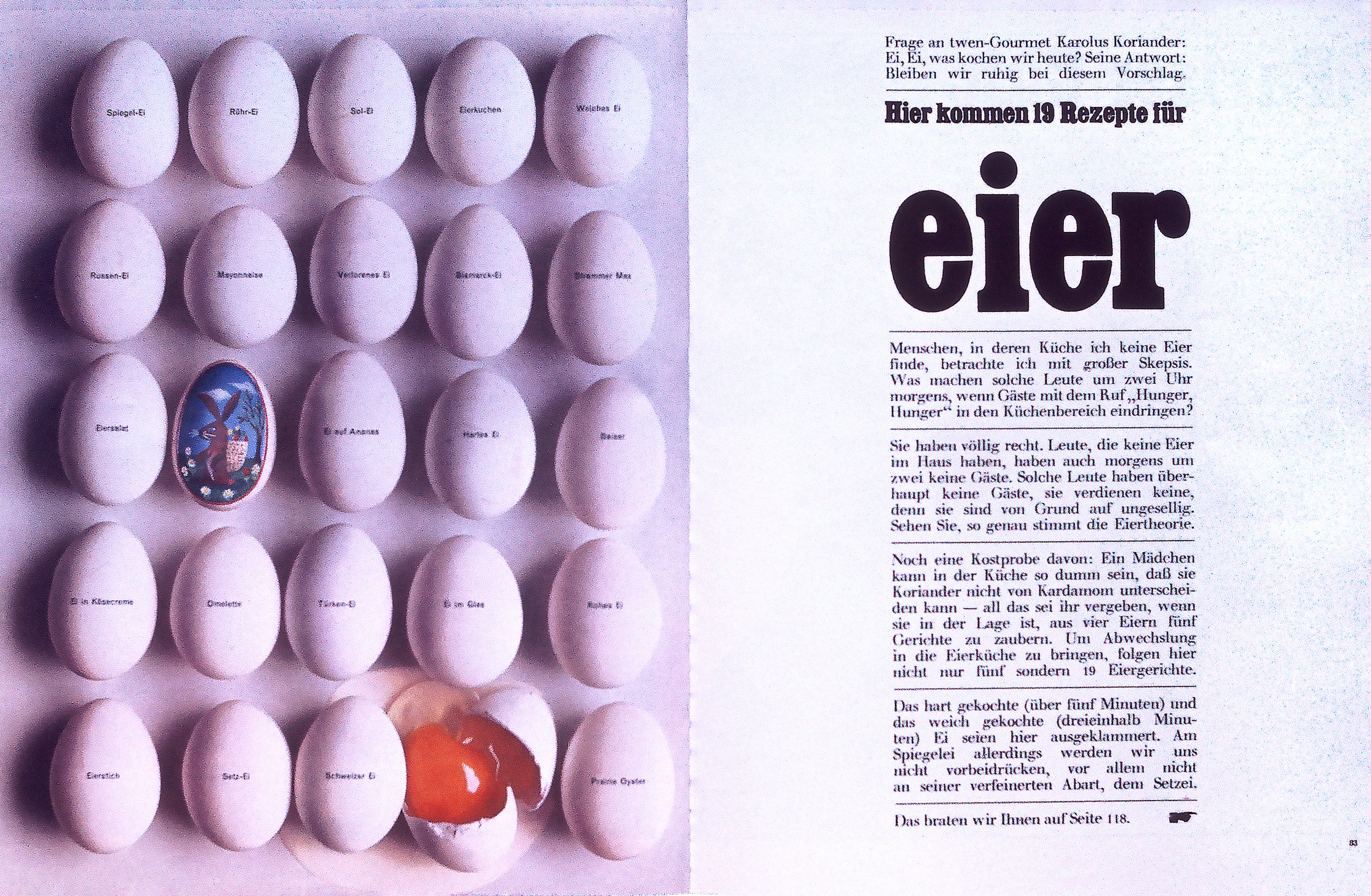
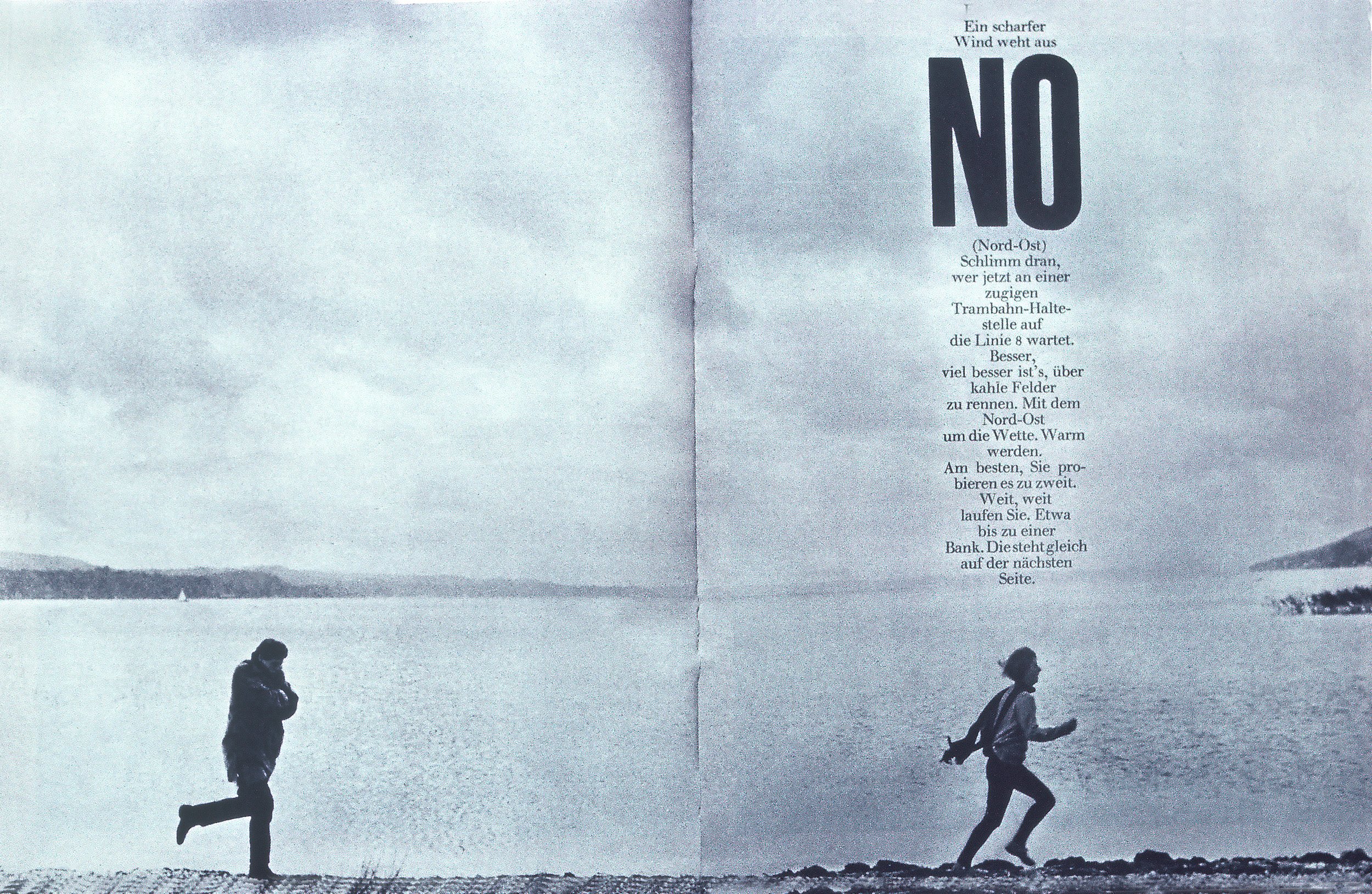
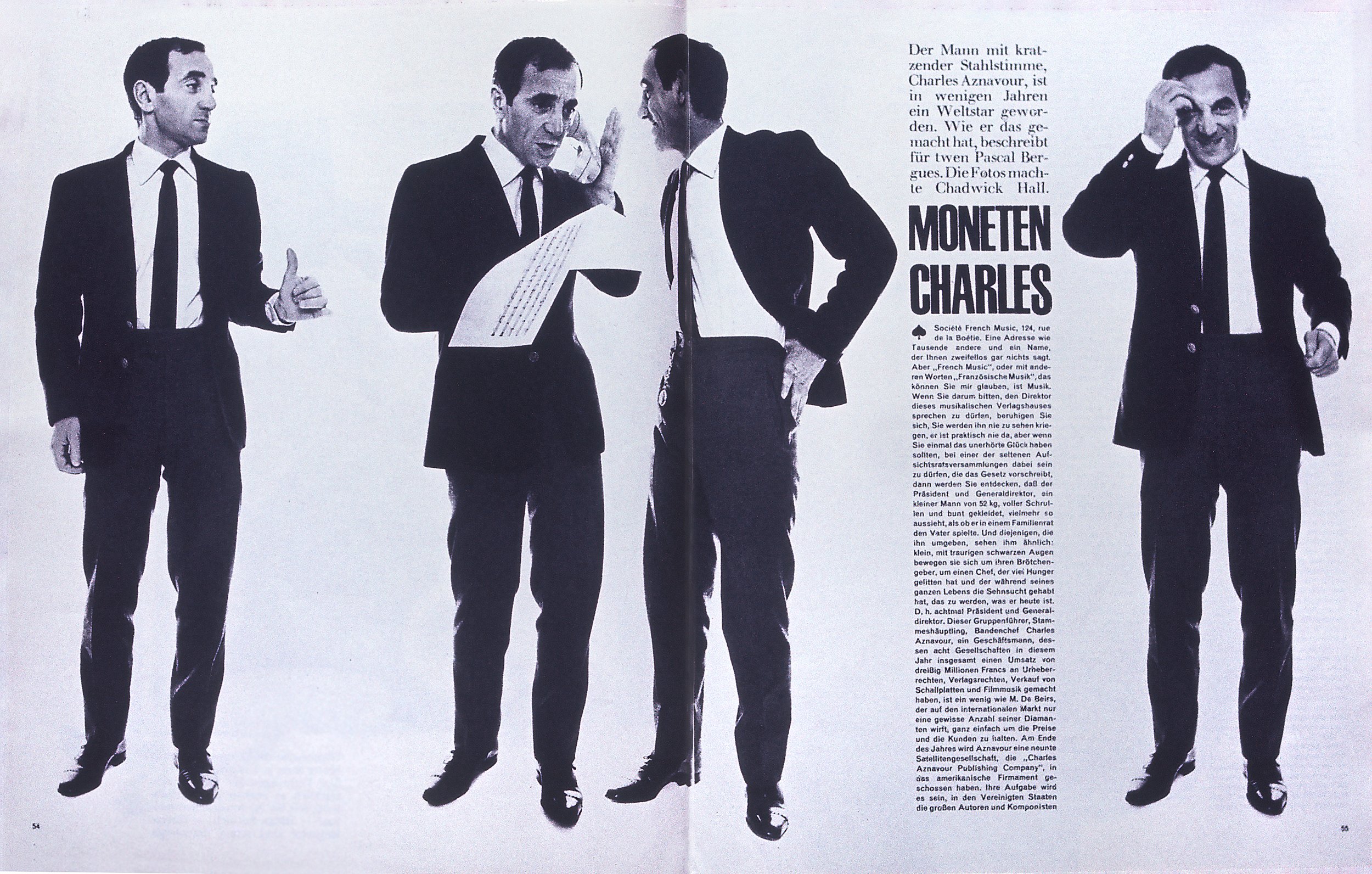
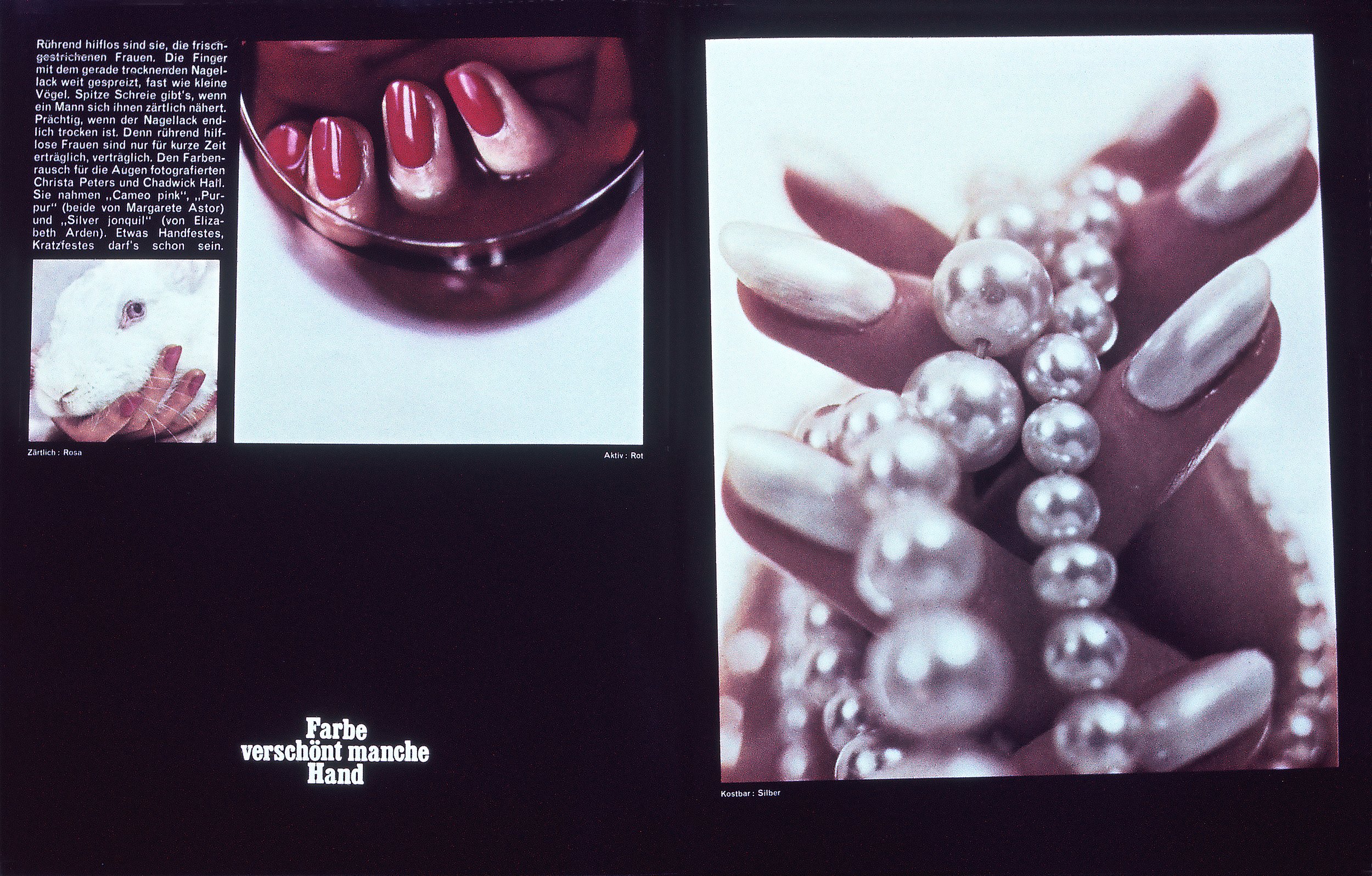
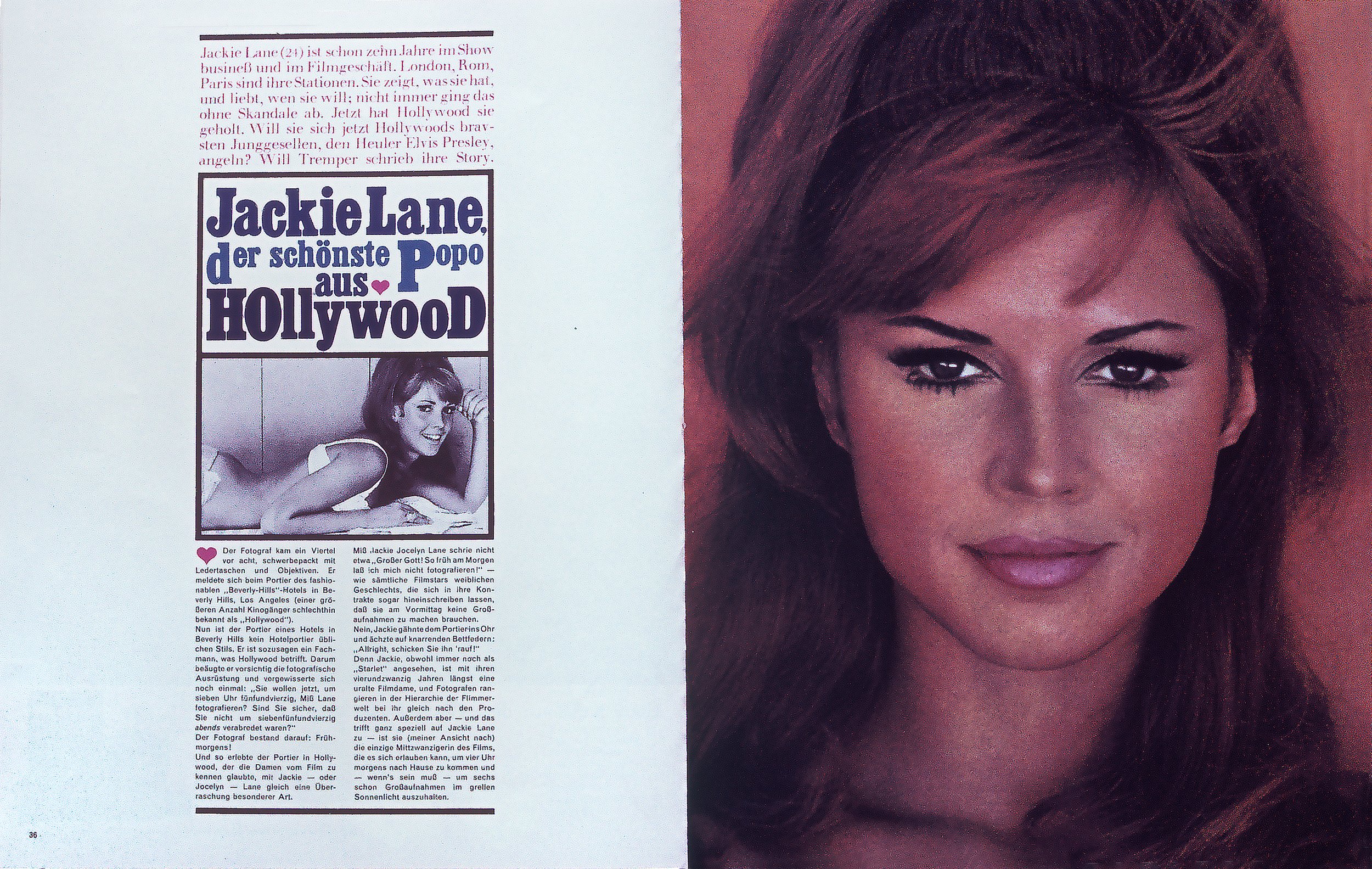
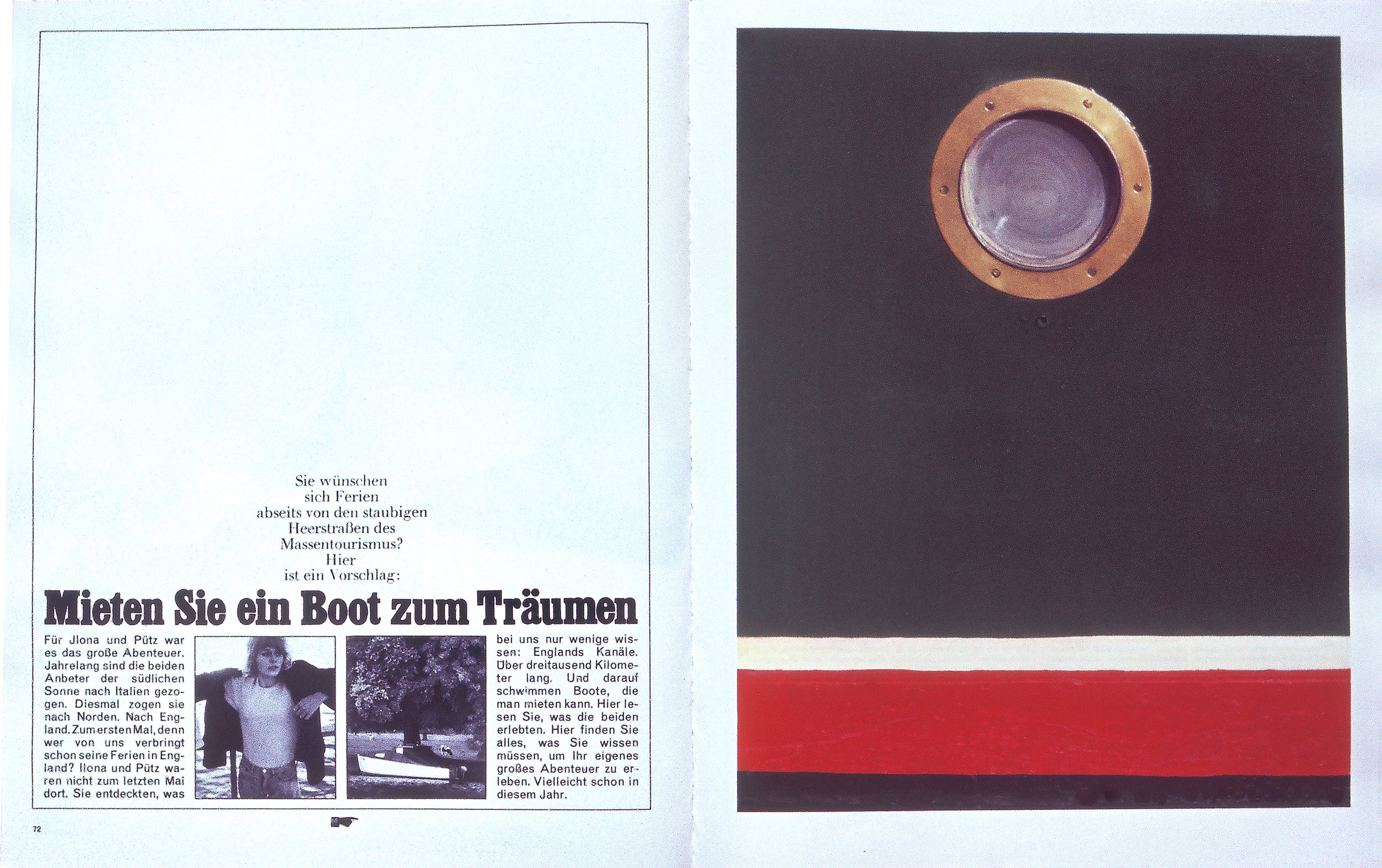
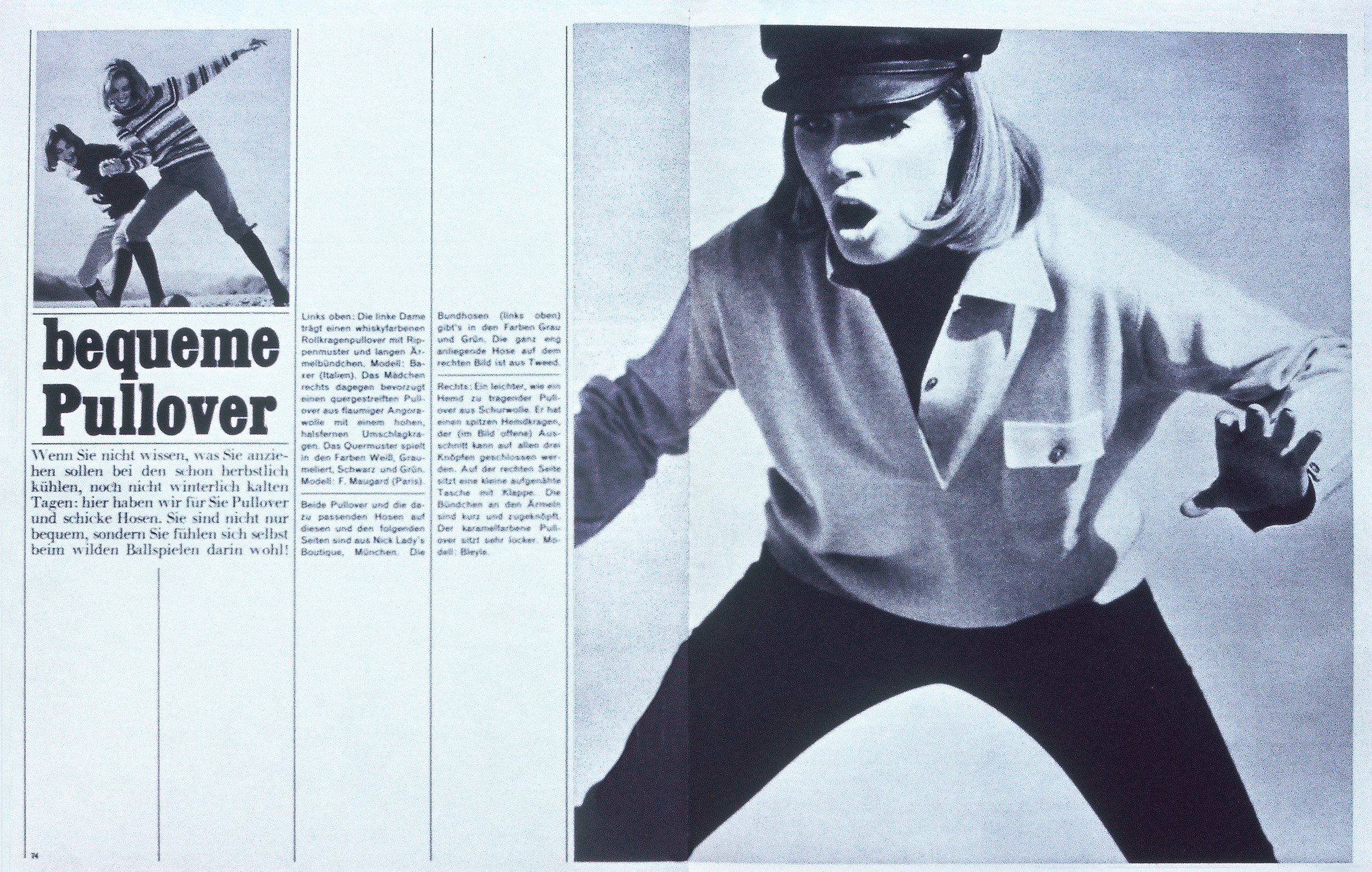
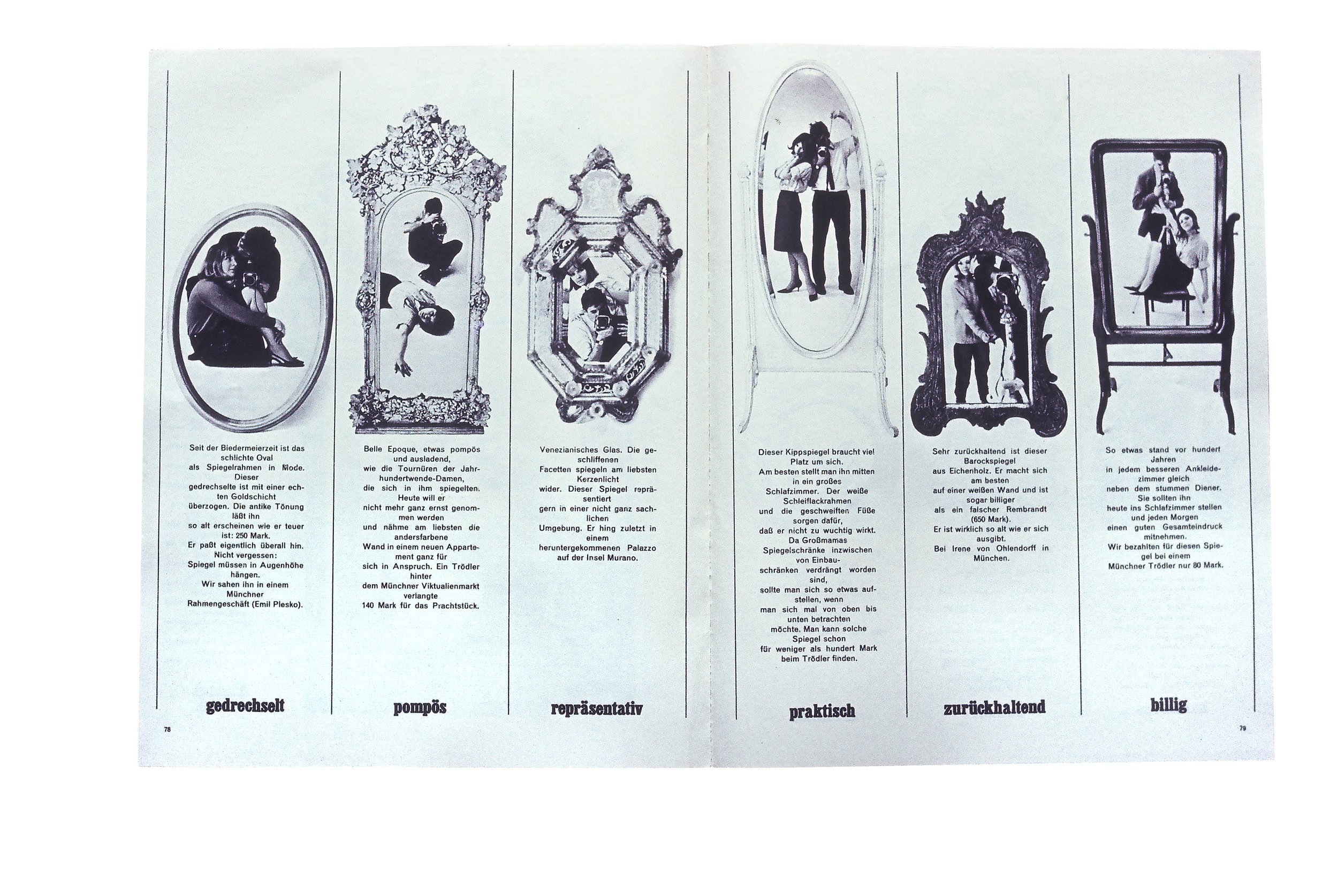
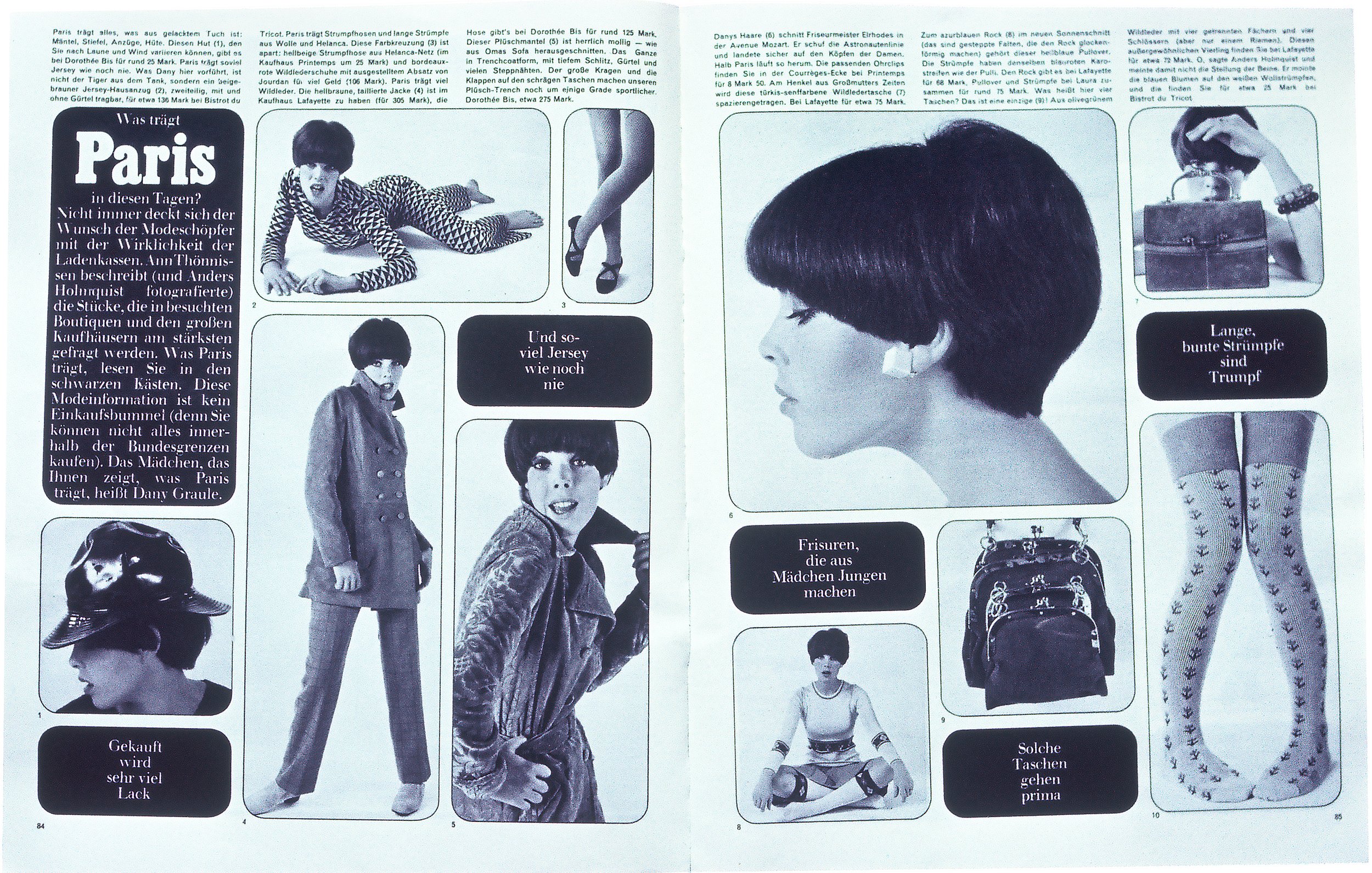
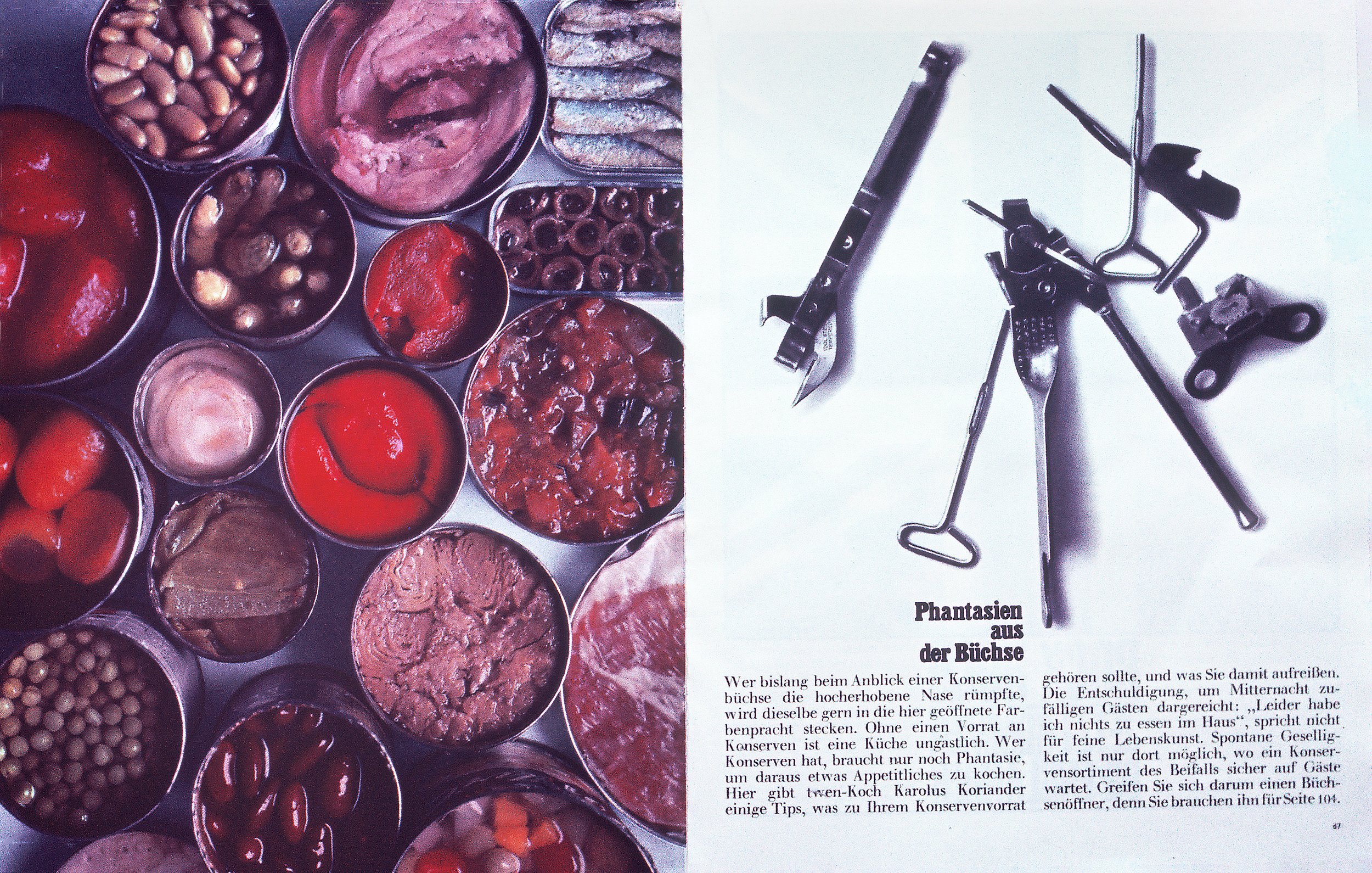
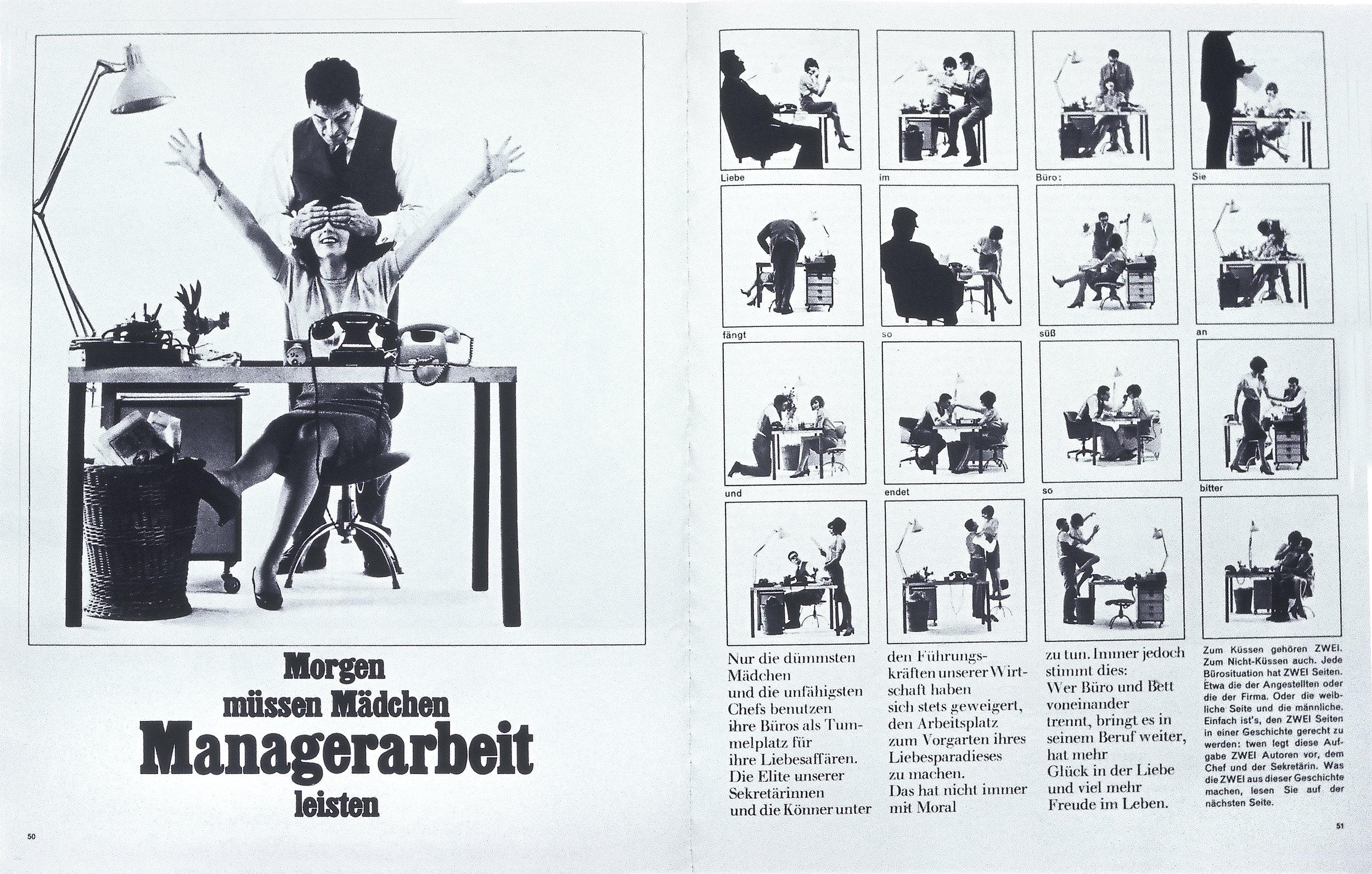

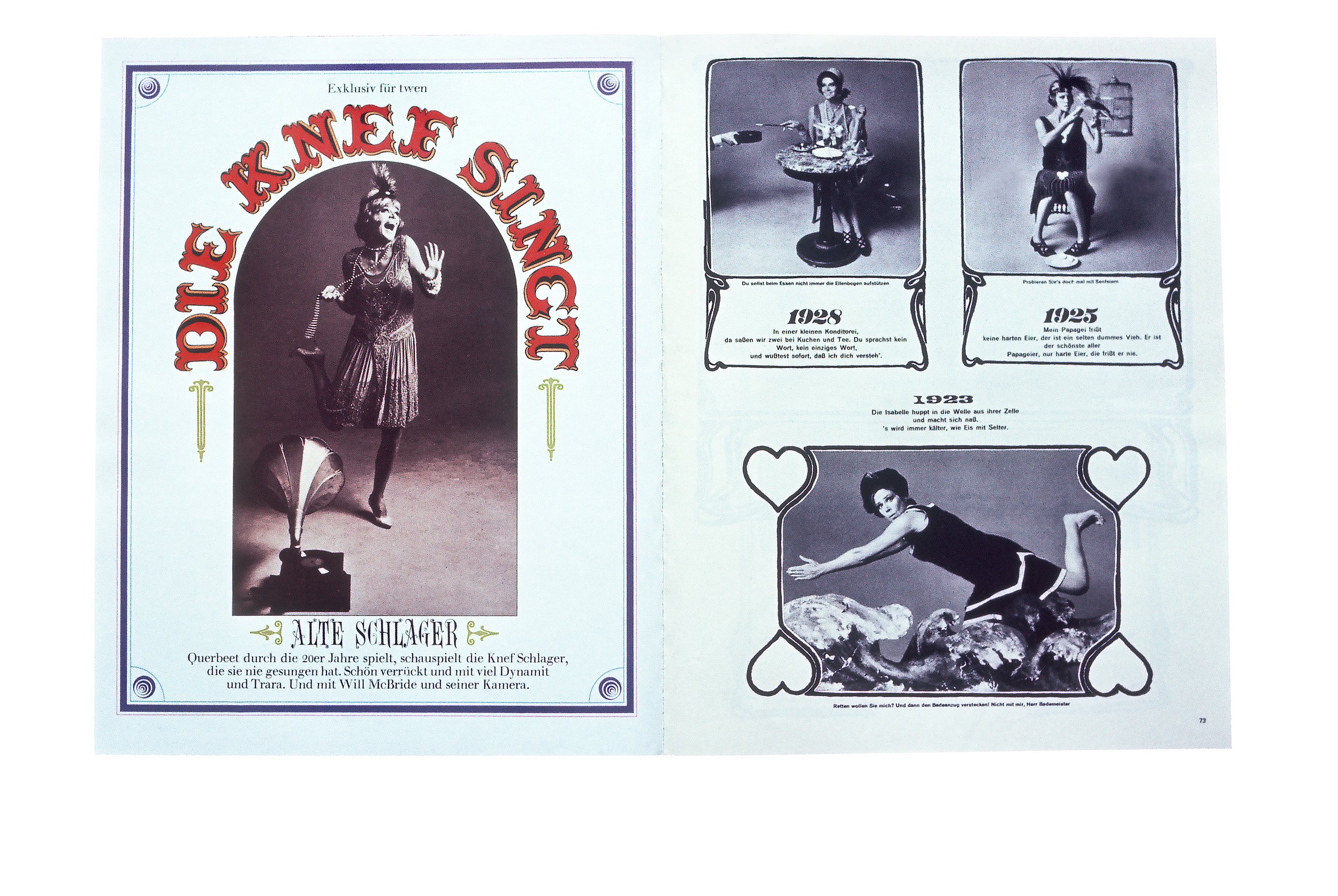

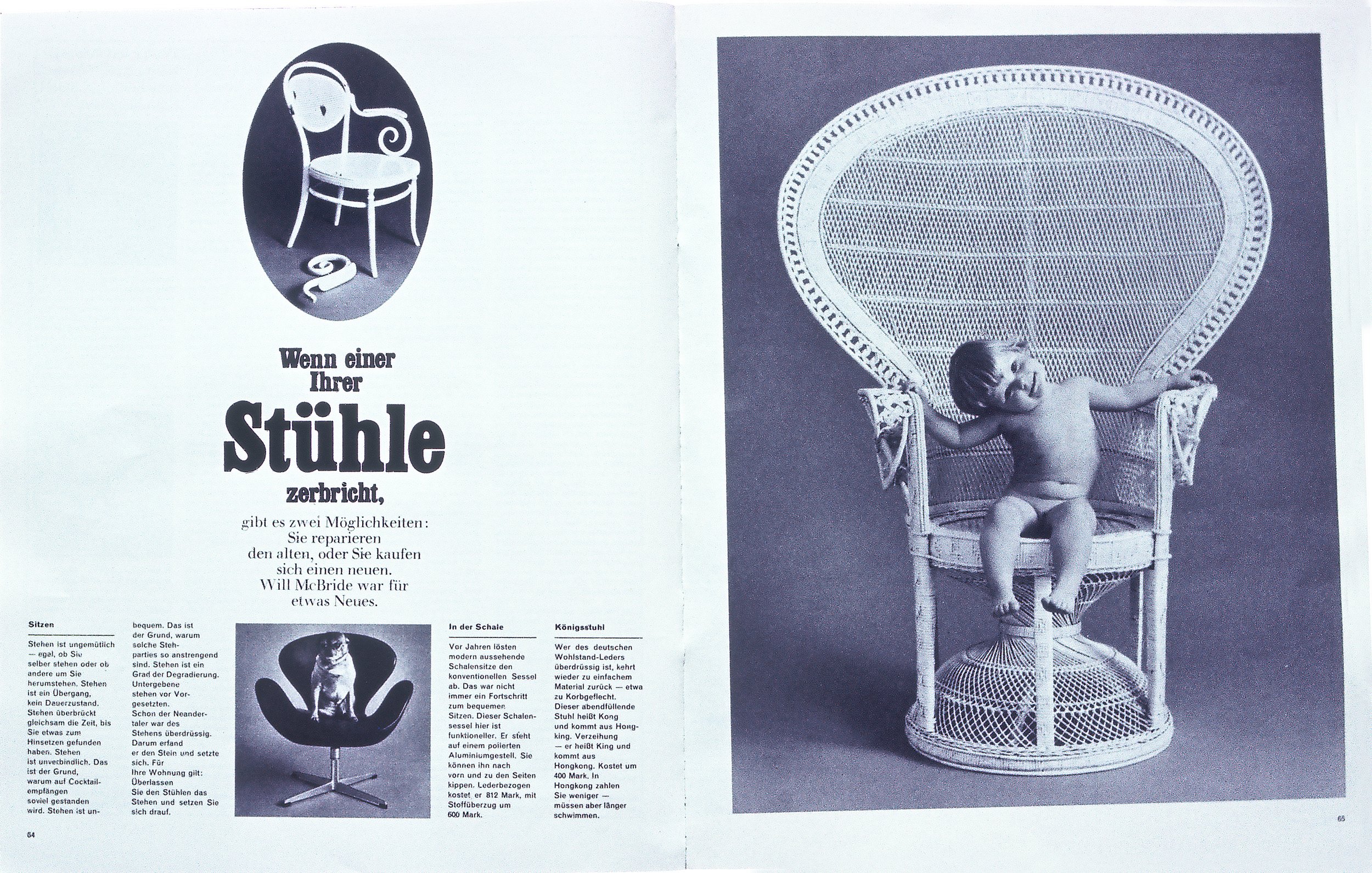
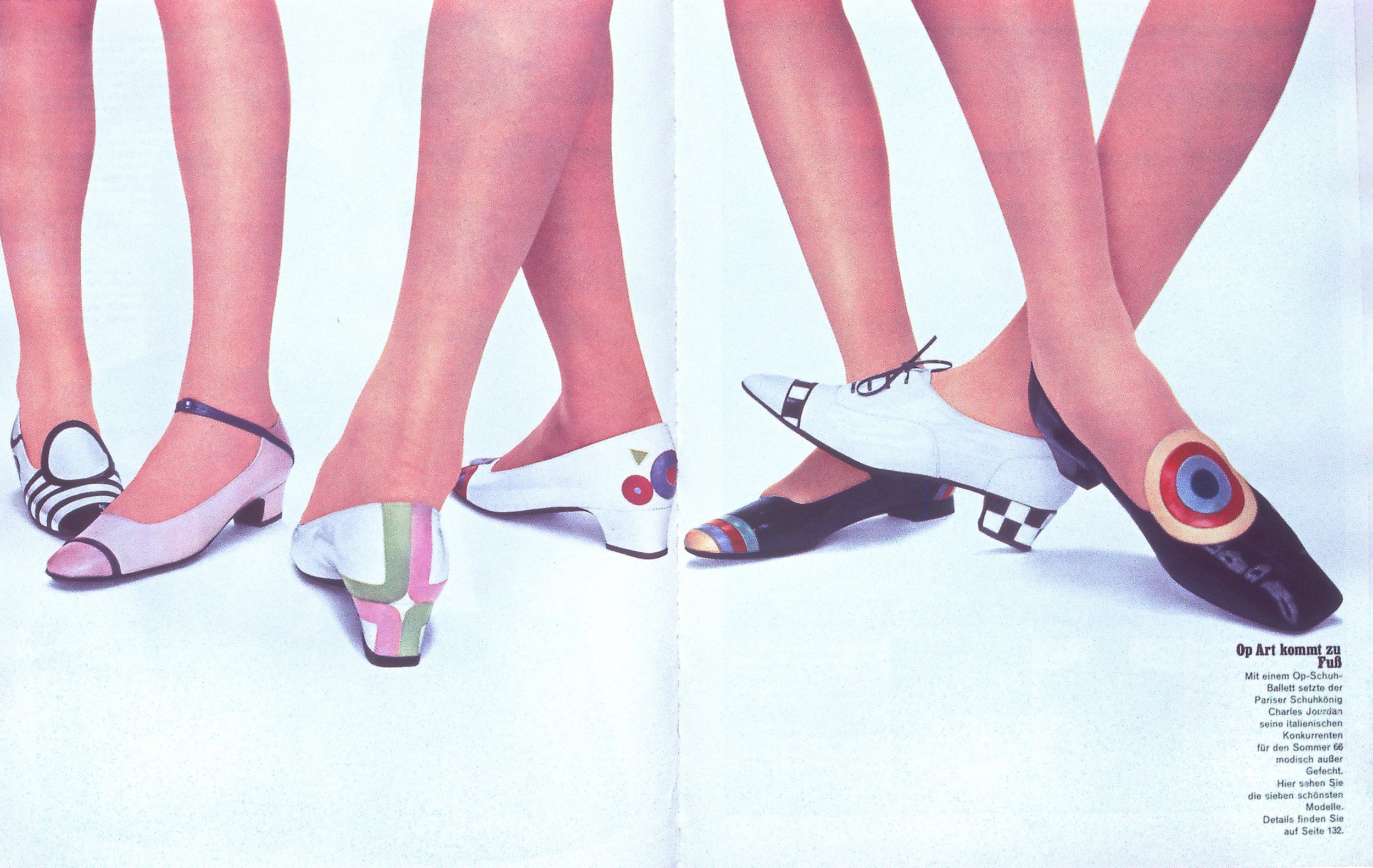
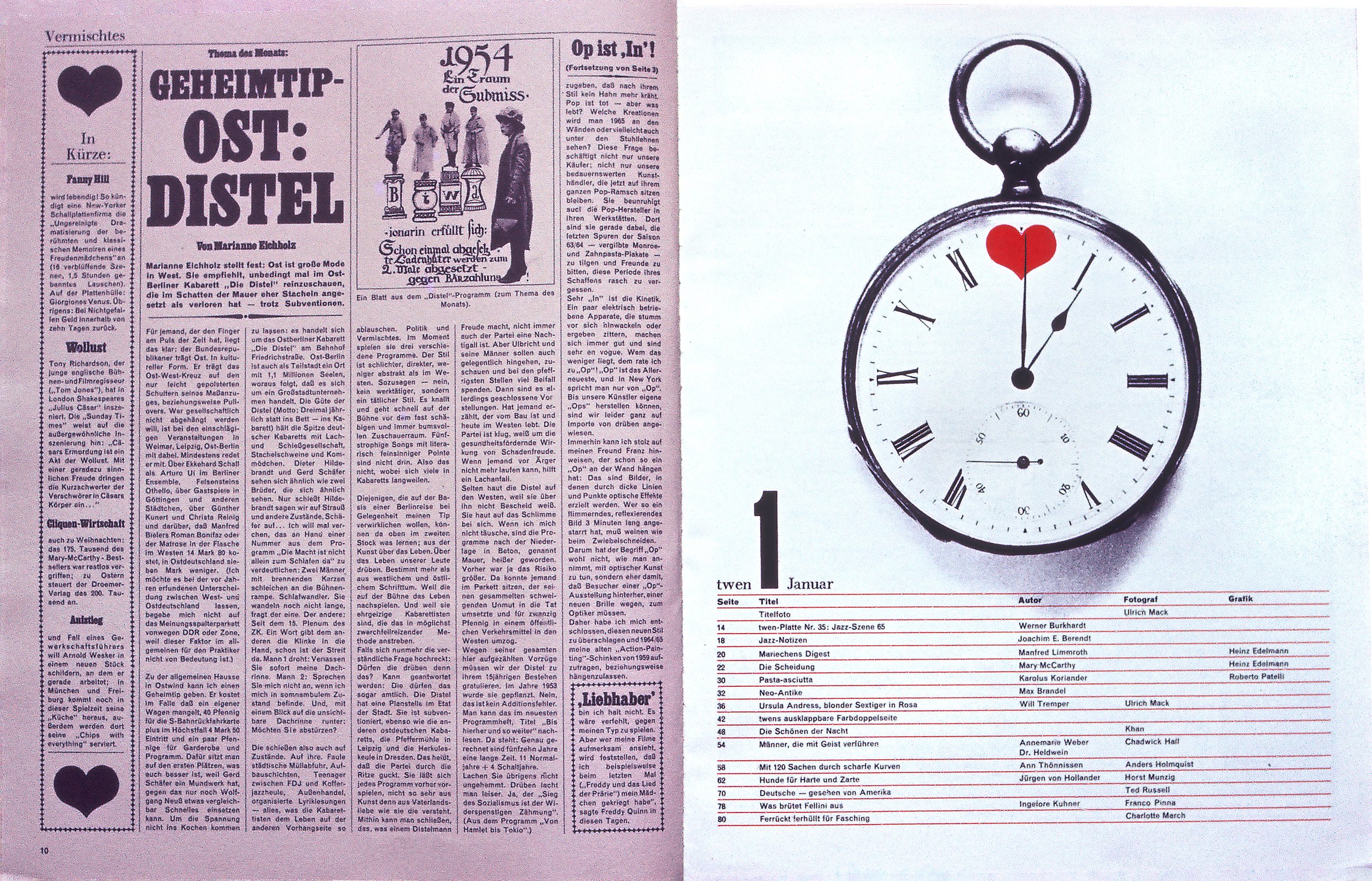

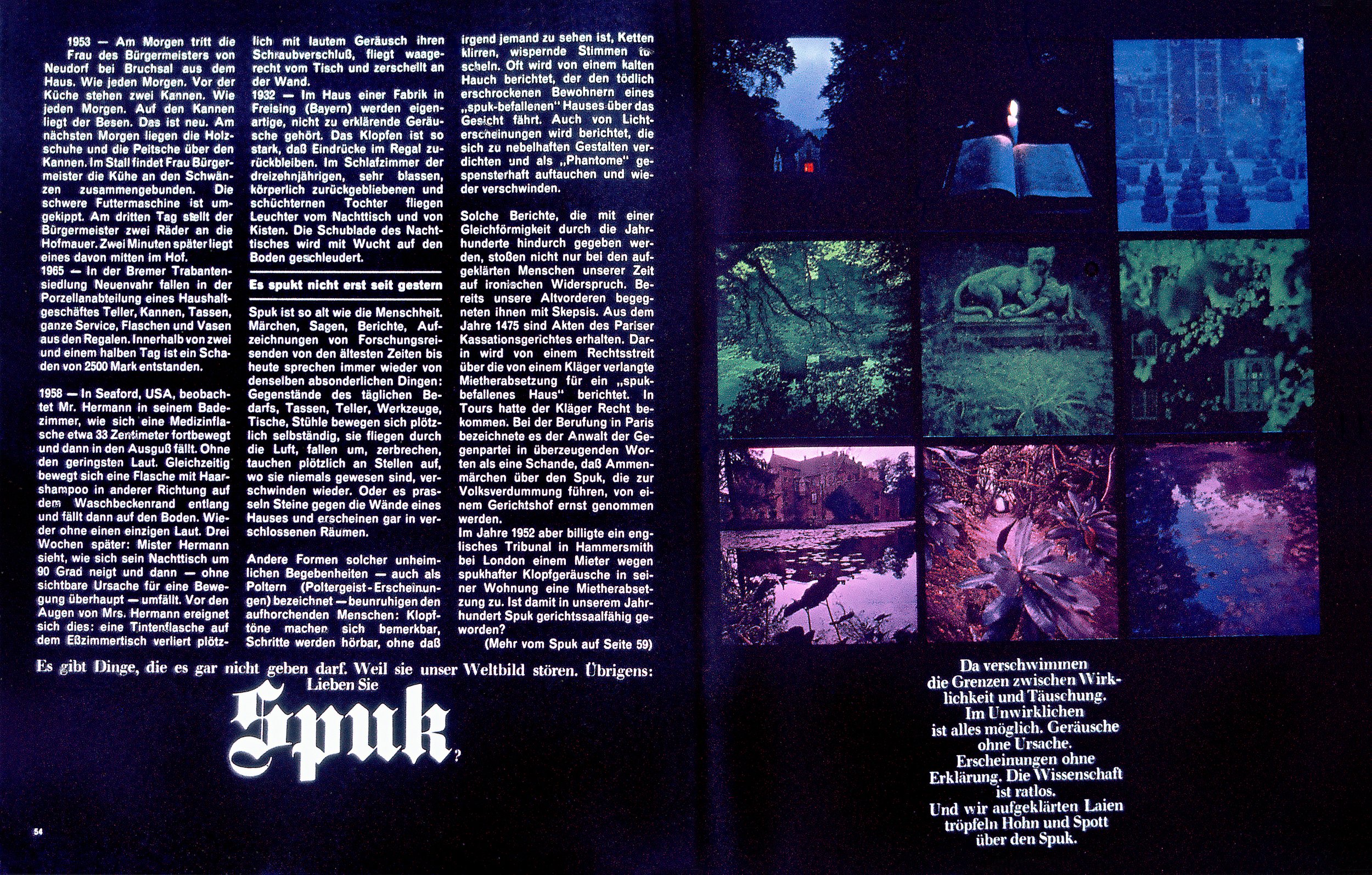
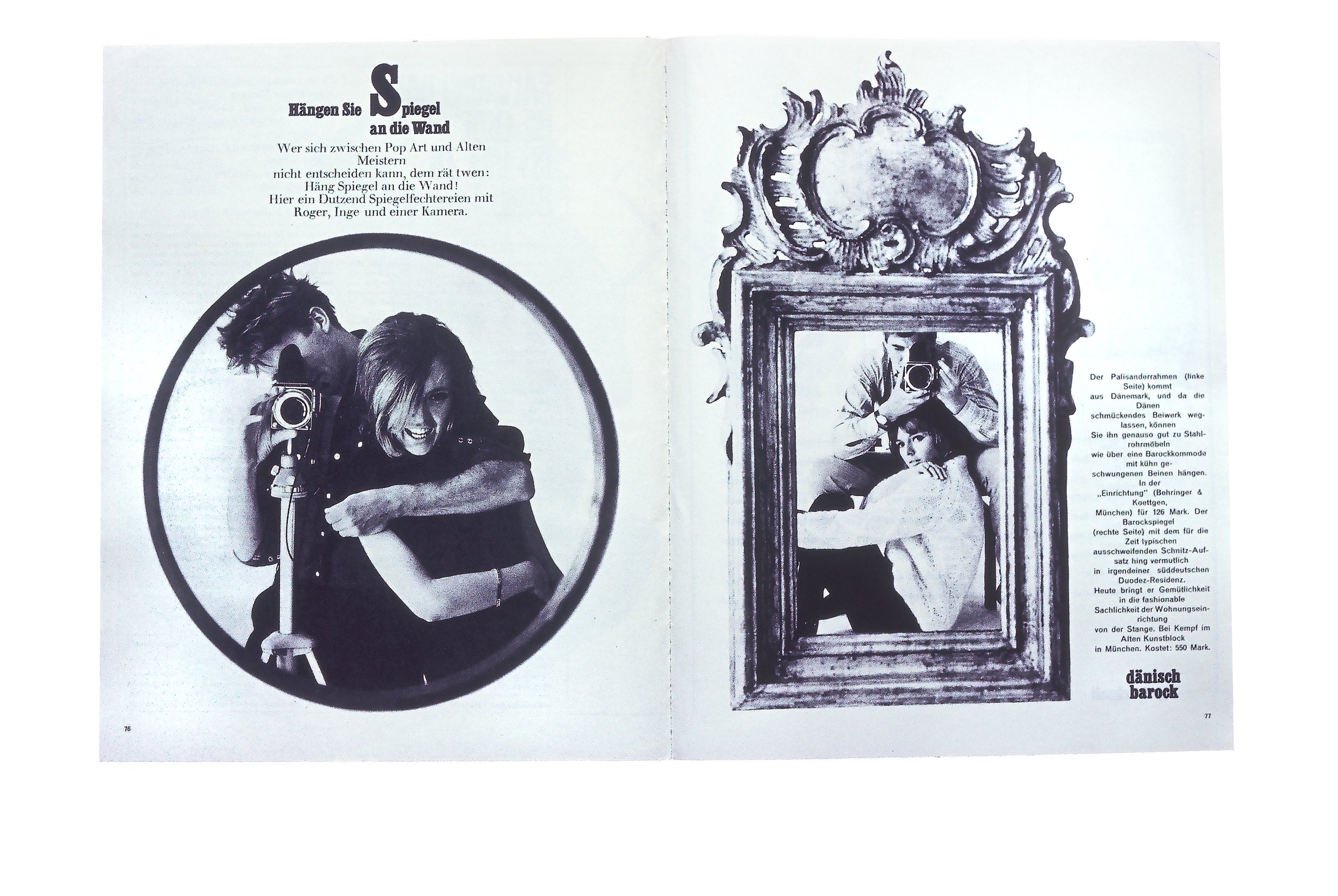

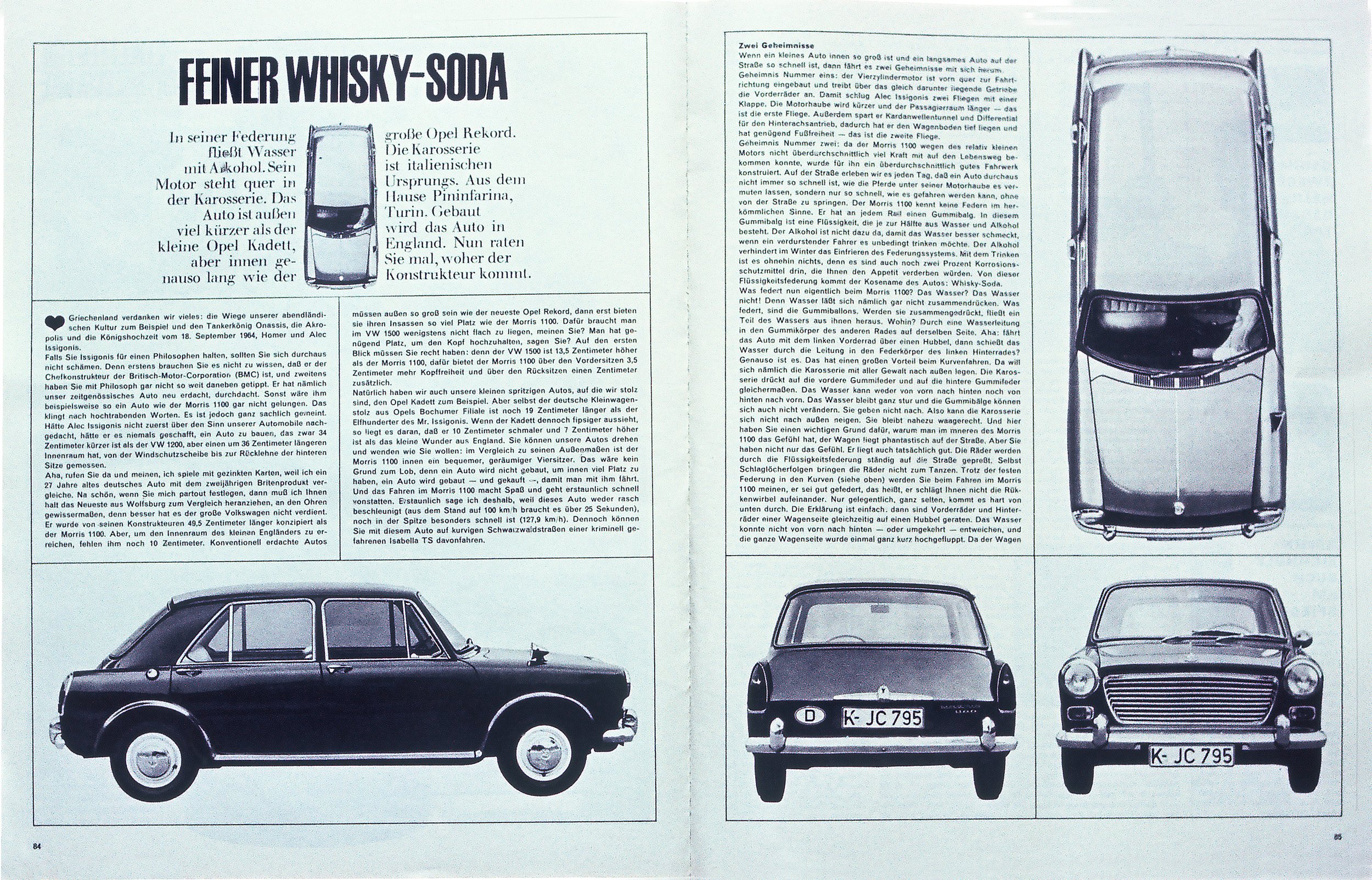
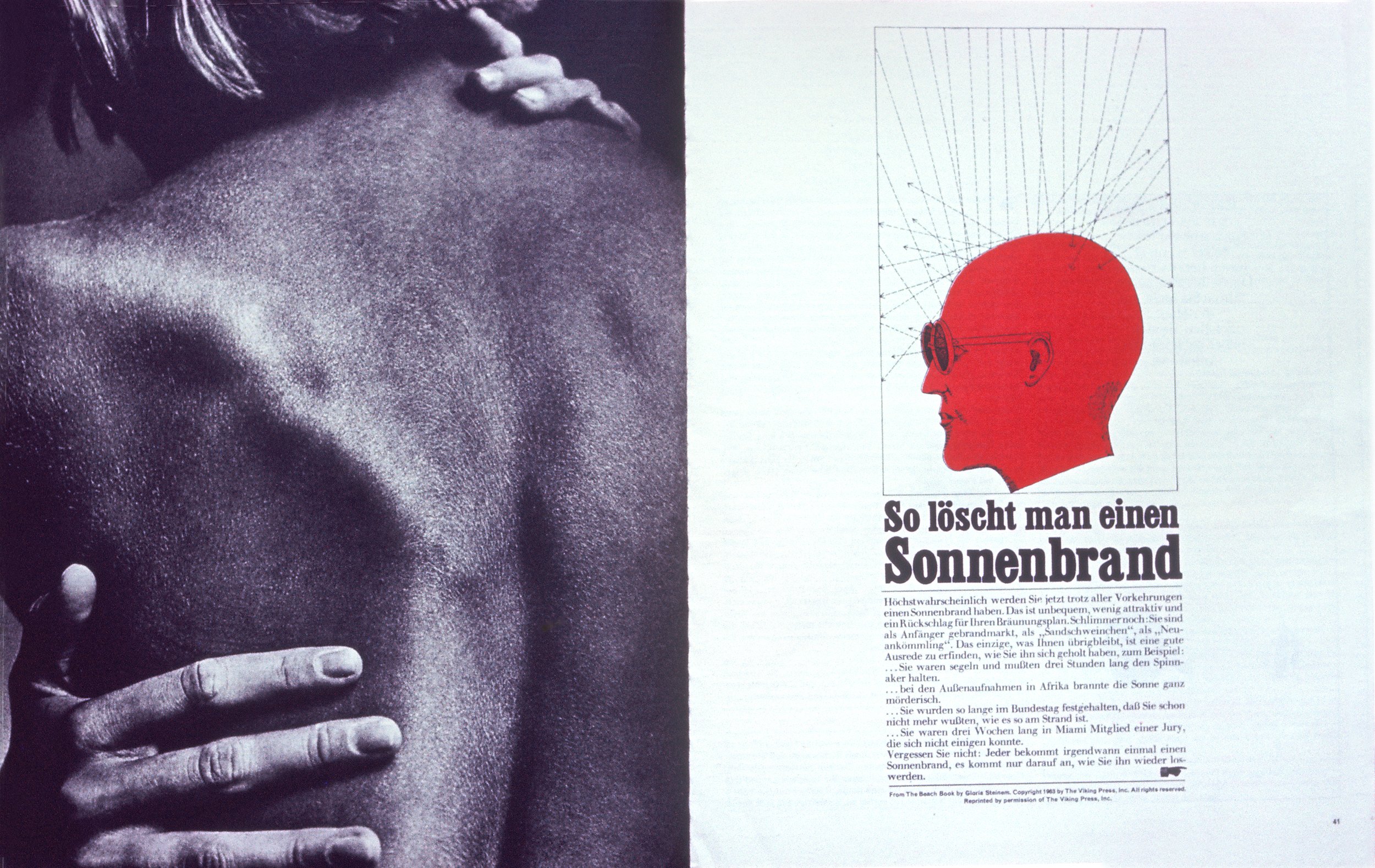
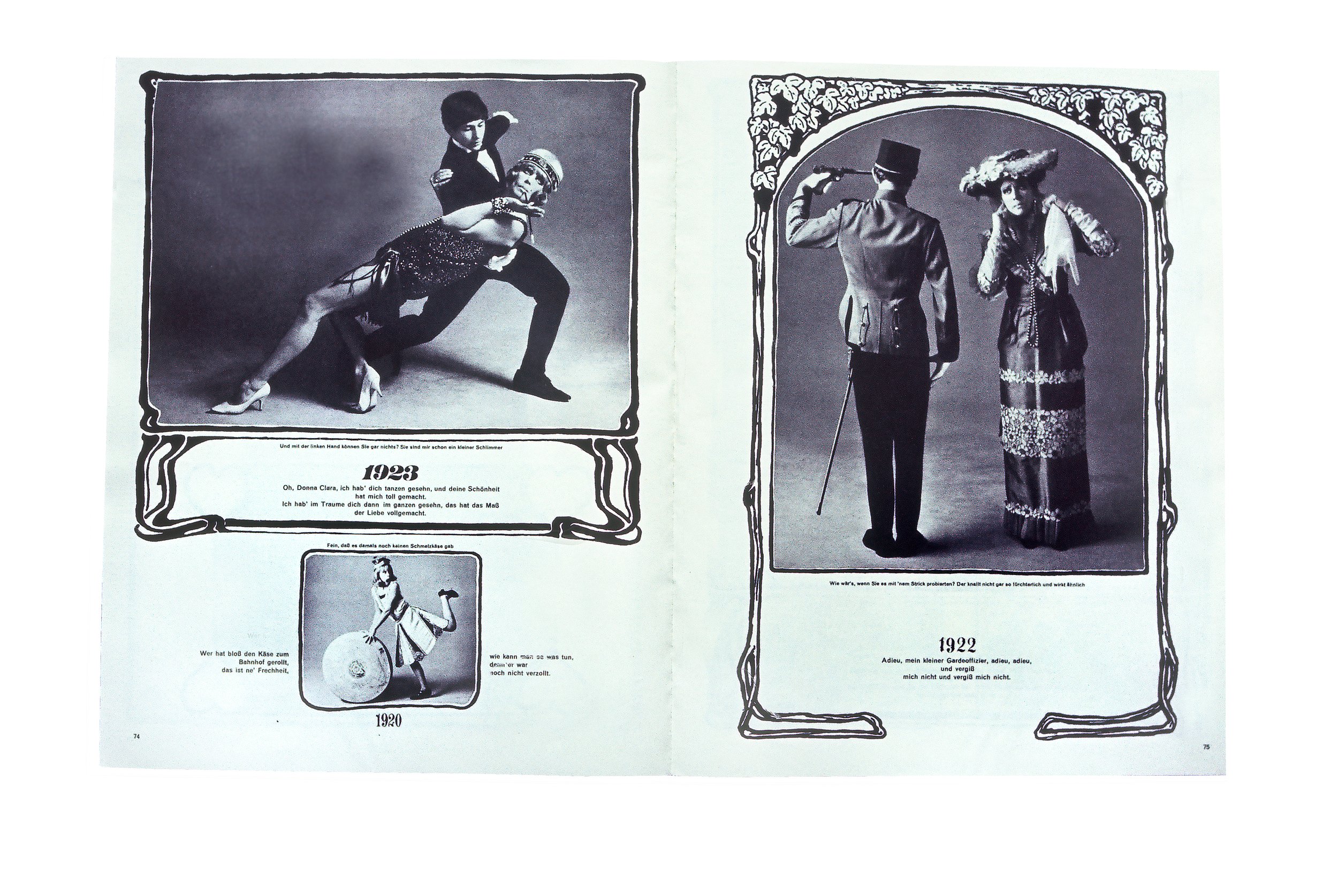
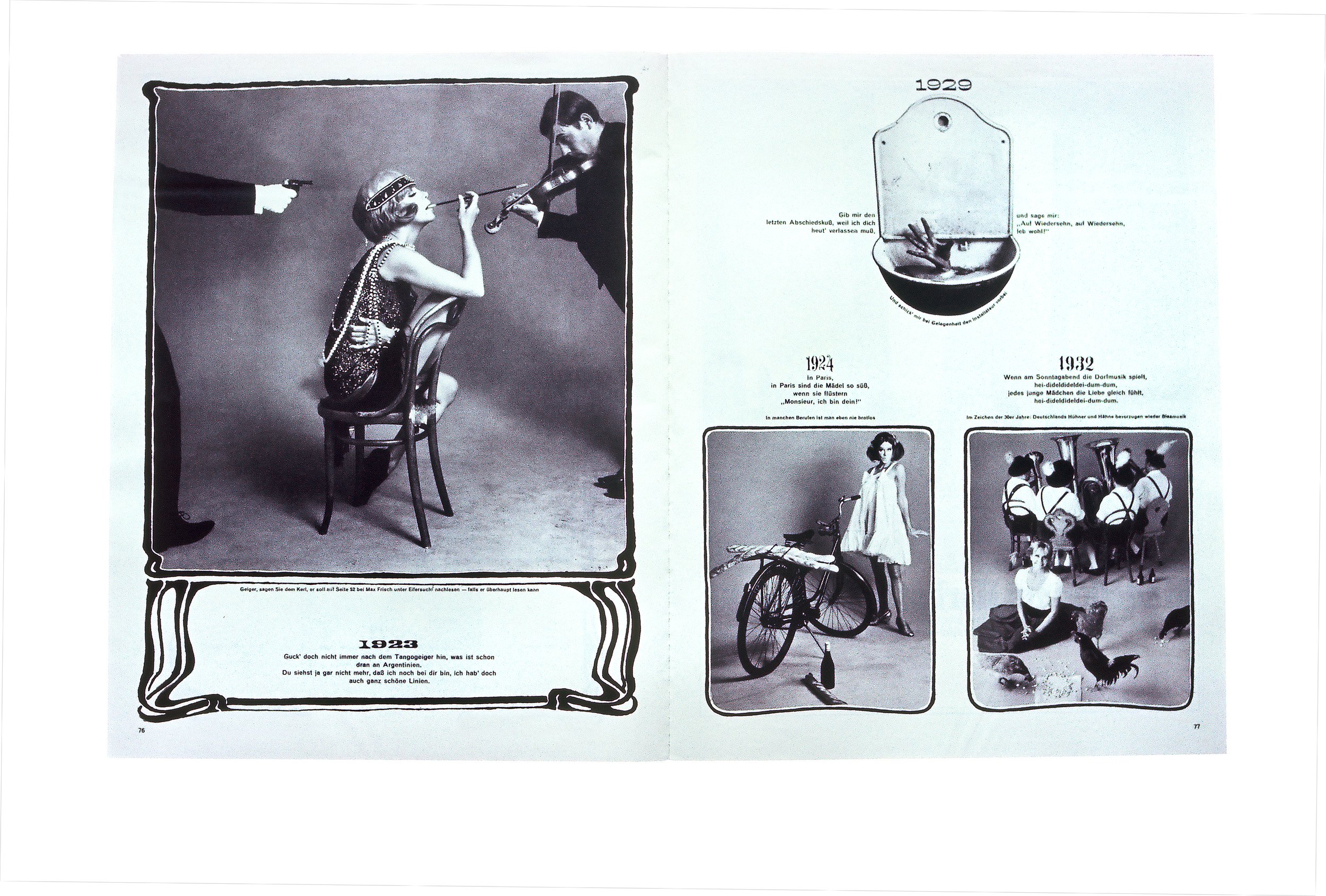






George Gendron: Yeah. But that’s a different definition, Will, of being “in” the art department. [Laughs]
Will Hopkins: So, I waited there. I knew I had to wait there. I couldn’t get out of there. Because if I did, I wouldn’t be able to get back in. So I just came every day and I sat on a sofa and then when they had a problem, I would jump in and help.
And so Fleckhaus gets there and he says, “You’re ‘the Hopkins’.” And I said, “That’s me.” And he said, “Well, I’ll see you later.” And he has a little office that was as big as two phone booths, that was off of the big room that we were working in.
And his editor comes in and he’s talking to the editor. And then he somehow realized from the editor that I am there to work for him and I’m not going to go away. And he said, oh my god. And he says, “Get that guy in here!” So now there were three of us in a space the size of the desks that we’re sitting at here. There were three of us in the room.
Willy Fleckhaus, art director of Twen.
And he says, “What are we gonna do with you?” And I said, “Listen, I come from a little area in Arkansas, and when you’ve got something to do, you do it. And I had to get over here because I wanted to work for you. And I’m here and I’m ready to work. And he said, “All right.”
George Gendron: Did he say it with that level of enthusiasm?
Will Hopkins: Something like that. And then I think he told me to go wait because he’s still talking to the editor. And Fleckhaus ran the magazine. The editor didn’t. Fleckhaus ran what it was gonna be.
So anyway, Fleckhaus comes out and he says, “Let’s go through this project and see how much we can do this afternoon.”
And he had these spreadsheets. And he would draw on that sheet or whatever, you know, sometimes just write something on it and then I would go execute it.
Mary K Baumann: And that little sheet was the 12-part-grid.
George Gendron: That was it. A little, tiny thing.
Will Hopkins: Yeah. Right. Yeah. I’ve got them around here. We can put one up on the screen if you want.
Mary K Baumann: Anyway. The beauty of the 12-part grid is that it provided a standard throughout the publication. And so you could have two columns at six units. You could have three columns at four units. And then you could mix it all up. And it was a way to build scale and contrast within the publication.
“One Sunday afternoon, I’m walking down the street in Chicago. I said to this friend of mine, ‘You know [what]? I’m gonna go to Germany.‘”
George Gendron: I was just about to say, when you look at pages, for example, from Twen in those days, it feels as if it were executed last month. You worked with these very large and very horizontal images that broke up the verticality of the grid that was just breathtaking.
Mary K Baumann: The other thing about that grid is because of those 12 parts, it was a way to build—well you would say white space, but it was really breathing room—within the publication so that you could focus on the content. It was a way to get your eye to focus more clearly on the content.
George Gendron: So that 12-part grid almost suggests a kind of Germanic engineering approach to design in a certain kind of way. And I’m curious whether people were enamored of that in the same way they became enamored in this country with the engineering of Mercedes and Audi and BMW. Has that ever occurred to you?
Will Hopkins: I’ve never bumped into people who had any idea about it. When I tell people or show people, when we deal with some publication that we work with and we sit down and we say, “Now this is how we put a page together.” We show these little pieces of, you know, sketches, little pages and we start talking about, you know, how you can look at this and how you can work with it.
Mary K Baumann: One of the things about the grid—you know, you started out with a blank page and it’s like you’re working in a vacuum. But the underlying grid was a way for you to easily organize content, pictures, words, and so on.
Will Hopkins: Mm-hmm. Yep.
Mary K Baumann: And that was a real key to it, is like you weren’t reinventing the wheel every day. And it was a way to create a certain consistency throughout the publication, so it looked like you were in the same place.
I’ll get back to Fleckhaus, but I met Will, he was a visiting lecturer at the University of Minnesota. Look had just folded and he walked in and I was like, “Oh, this is magic. He’s this art director from Look Magazine.” And this was in the journalism school, and he walks in with a three piece suit, pocket watch and a sheepskin coat thrown over his shoulder. He was like a celebrity walking into our classroom. Anyway, he showed us this 12-part grid, and we were producing a magazine and we just got it like that. It was just amazing and suddenly everything made sense.
Will Hopkins: At least for her. [Laughs]
Mary K Baumann: At least for me.
One of the things that Will has told me about working for Fleckhaus, that was truly amazing working there, because of the way Twen looked, it was a showcase for photographers.
So photographers from all over the world were walking into the Twen offices from the US, and England, and Italy, and all over. So he got this tremendous education in photography from some of the greatest photographers around. The other thing that was very interesting about his time, I think one of the reasons Fleckhaus liked him being there, is that he had—this was after World War II—he had an American under his thumb. He had his little American. So any visitor that came into the office, he would bring by and introduce him to Will...
Will Hopkins: ...or he would call me to come into the office or, you know, something like that, just so that he could—I remember once he had like about four East Germans in there—and he says, “Hopkins!” And they sort of shook, and I came in and he said he wants a Coke or something. I mean, he didn’t have anything for me to do, he just wanted them to see me.
The 12-Part Grid, developed by Willy Fleckhaus in Germany, and imported to the US by Hopkins.
George Gendron: Were you establishing his democratic cred?
Will Hopkins: Well, yeah. It was just that he had “an American,” you know. And you look at these guys from the other side, they didn’t know what to do. They were astonished that an American was there working for him. They were astonished that there would be an American in that office.
George Gendron: Did they list you on the masthead as, “The American: Will Hopkins”?
Will Hopkins: They didn’t list me on anything.
George Gendron: But, you do manage to leverage the work that you had done there and you come back and you’re now on the staff. You’re an art director at Look Magazine, right? It’s 1967.
Will Hopkins: Yep.
George Gendron: Were they using the 12-part grid there or did you eventually use it?
Will Hopkins: No, no. I did.
George Gendron: So you used it when you became the art director?
Will Hopkins: I came there and I started doing layouts, and I just used the grid. And I got Neil Shakery, and Don Mennel, and Renee Schumacher. And they grabbed onto it when they came to work there, and I said, “This is how I do this.” And they said, “You got it.” They got it. Just like that. The other people who had been working there before never paid a lot of attention to it and didn’t know how to use it.
Look Magazine, New York, 1967–1971
George Gendron: So this is ’67 is during the heyday of Look and Life magazines.
Will Hopkins: Mm-hmm. Yeah.
George Gendron: And I’m curious because Life was probably twice your size in terms of circulation, I want to guess. It was larger. And I’m really curious, how do you guys...
Will Hopkins: I don’t know if it was that.
Mary K Baumann: Look was biweekly and Life was weekly, but I, that wouldn’t affect the circulation. Life was definitely bigger than Look.
George Gendron: I guess my question is how did you and your colleagues at Look think about, if you did at all, differentiating yourself from Life Magazine across town?
Will Hopkins: I don’t think we really paid a lot of attention to it.
Mary K Baumann: After Will was at Look, I was at Life Magazine. And having been around those guys at Life, they thought of themselves much more as a news magazine. Not the monthly Life, but the weekly Life. They considered themselves the news and pictures. Whereas Look was a little more trend-oriented.
George Gendron: And a little more feature-oriented I would think.
Mary K Baumann: They both did features, but Look was definitely more feature-oriented, more trend-oriented.
George Gendron: I can’t help but think back to a special issue that you guys did in, it must have been January of 1970, and the issue was “The ’70s” and you were looking forward…
Will Hopkins: Yeah.
George Gendron: …to the decade. And you did a piece that, to this day, I think is stunning. And I forget what you called it, but it was really the first major piece that I can think of about climate change.
Will Hopkins: Mm-hmm.
Look Magazine, Interior Pages
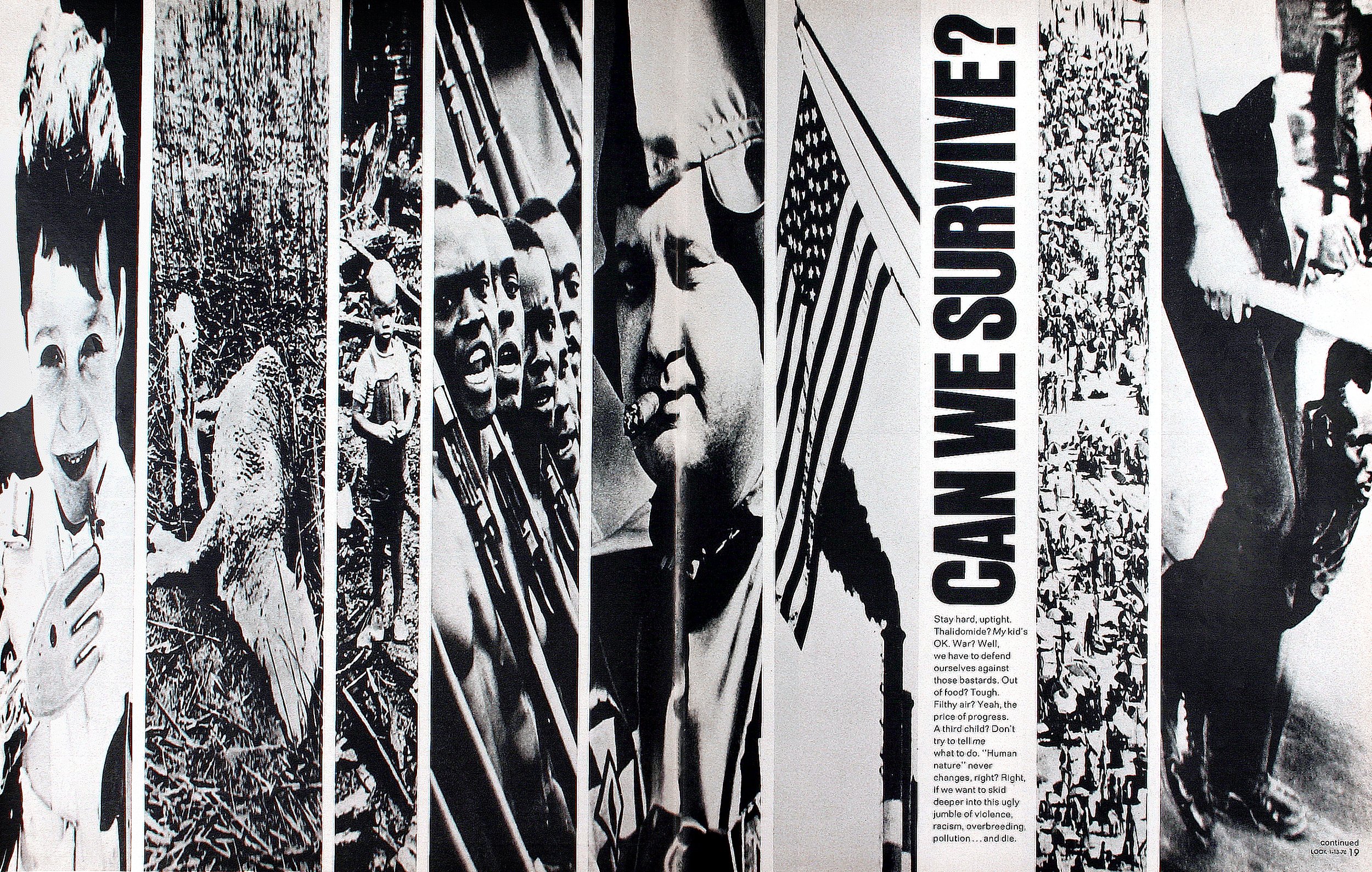

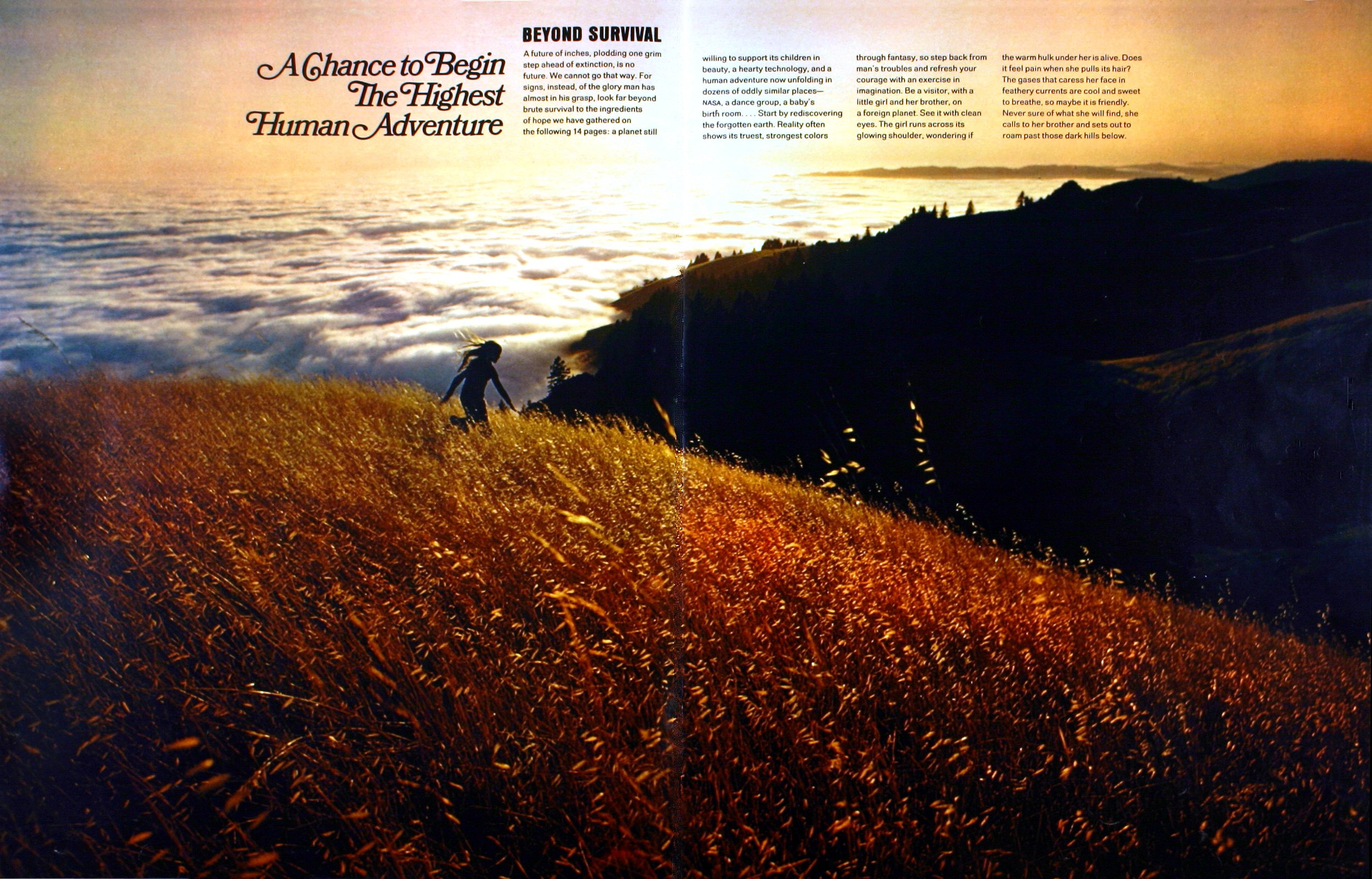
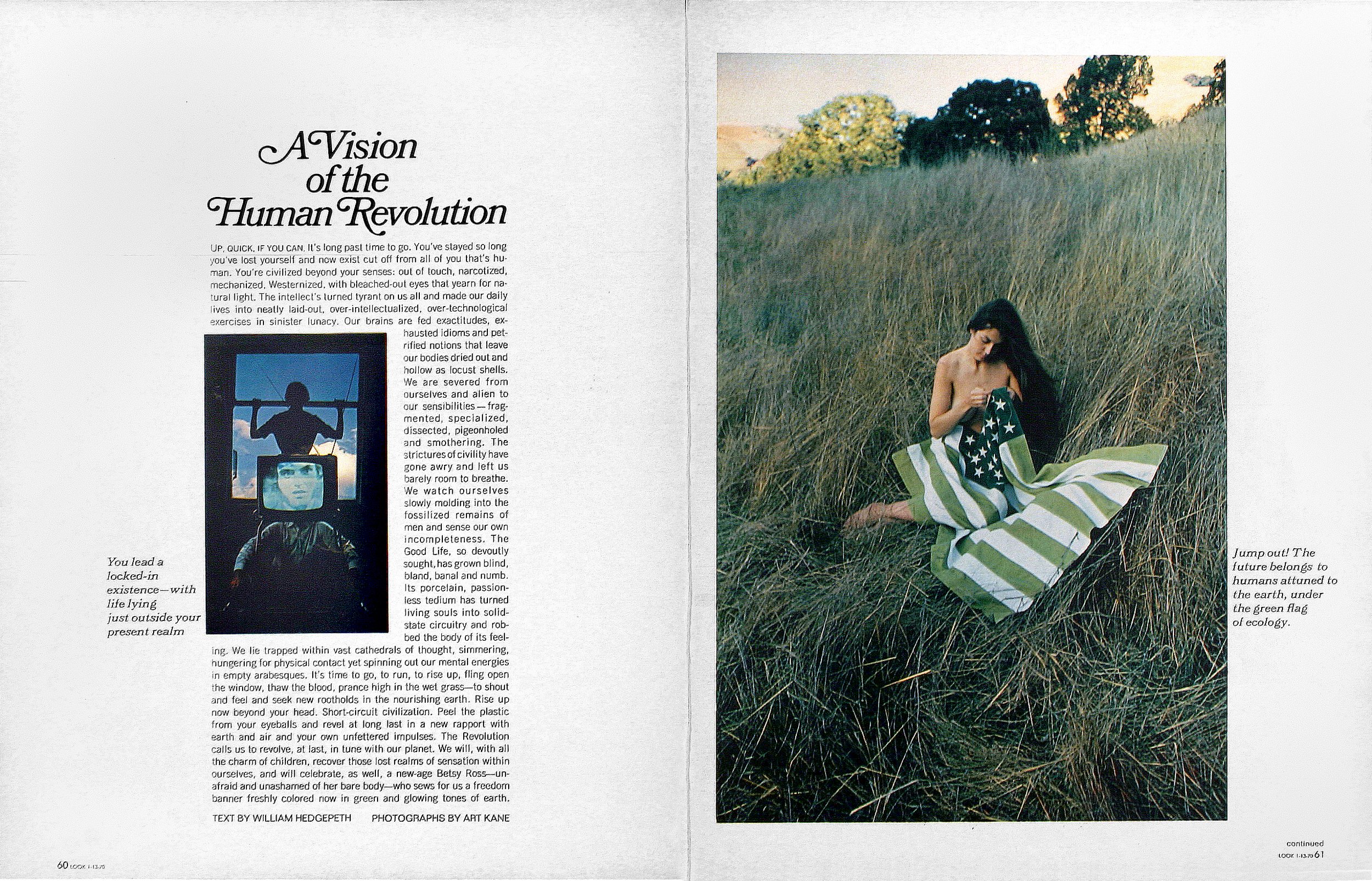
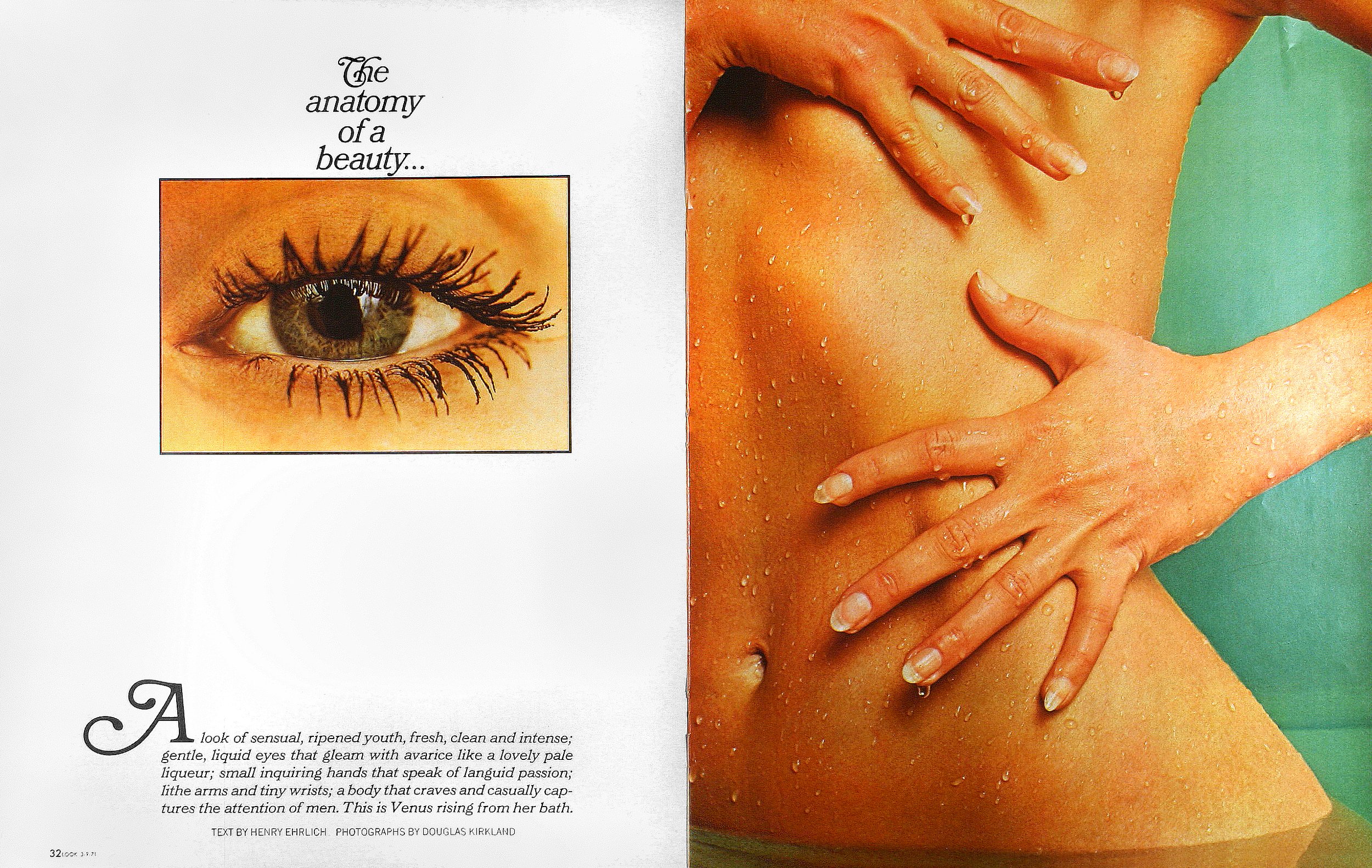
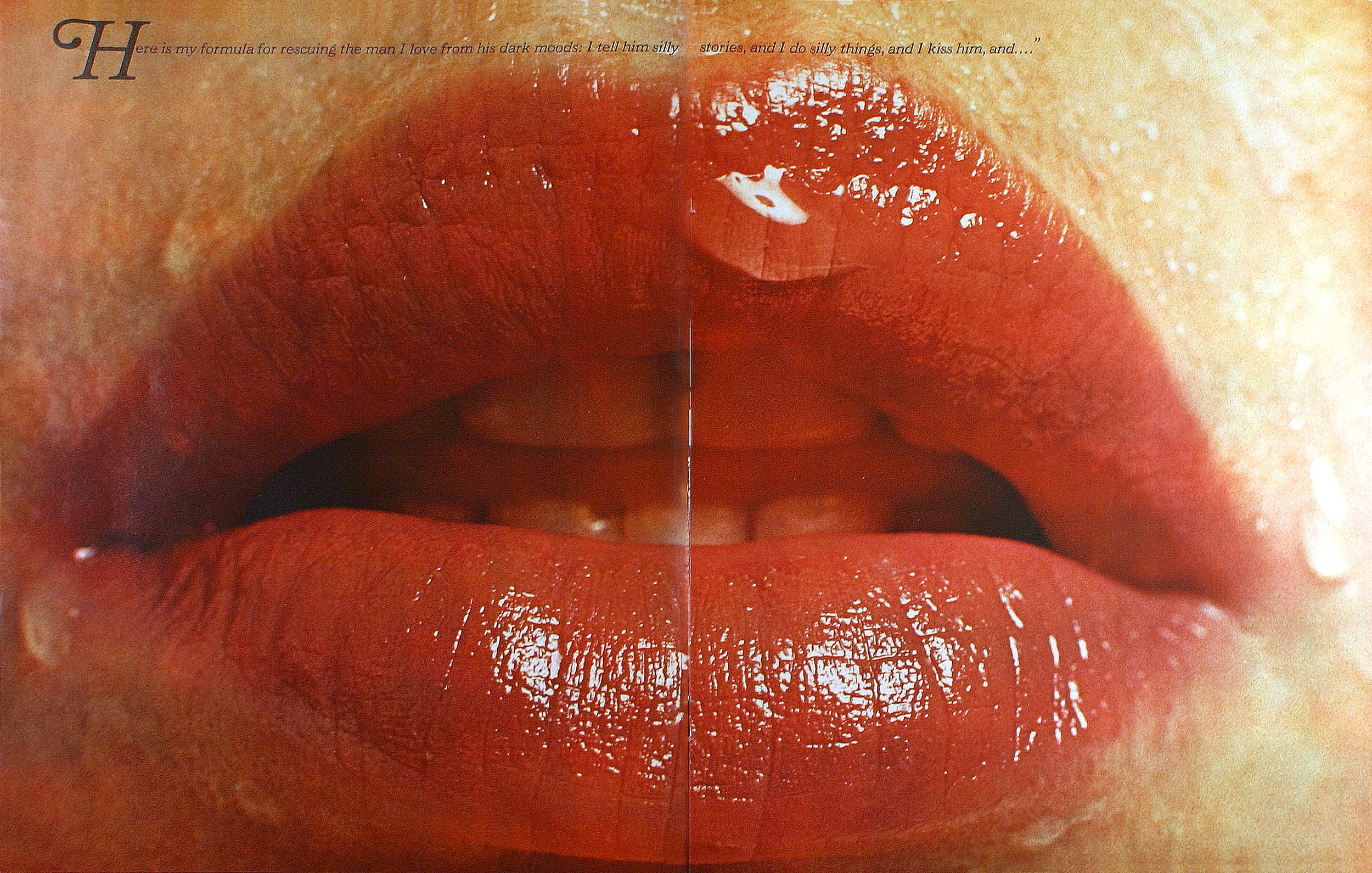
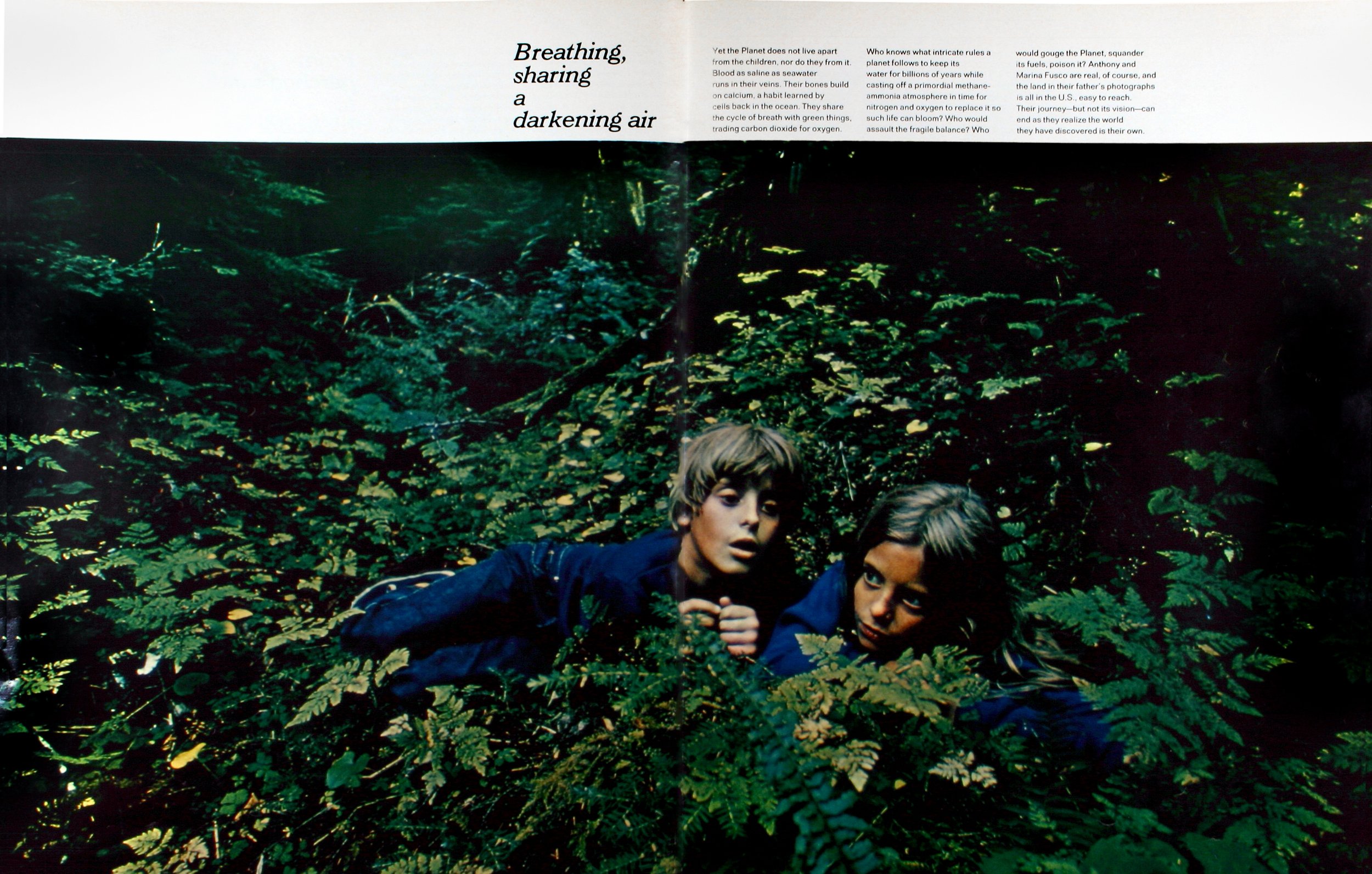
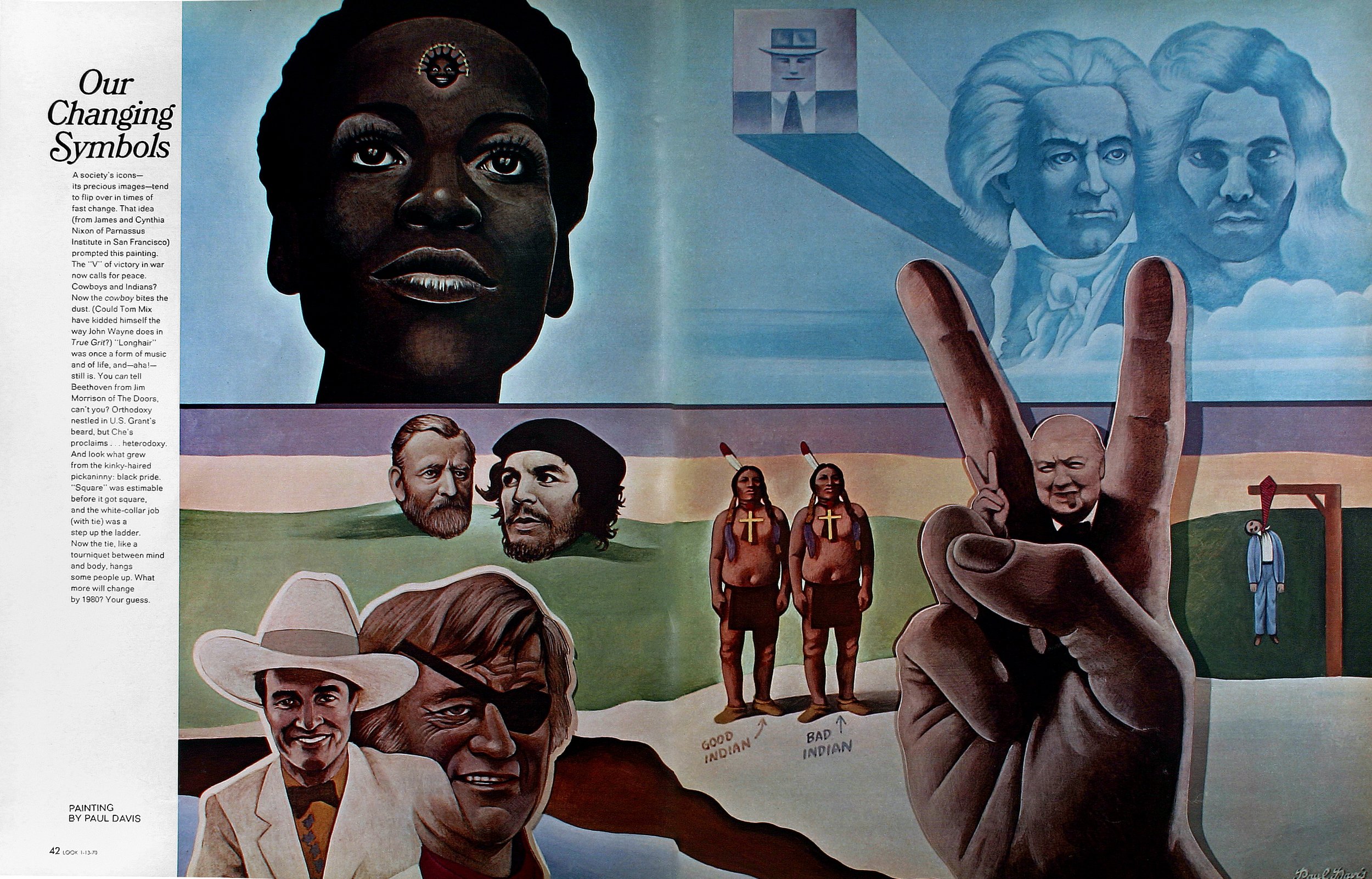
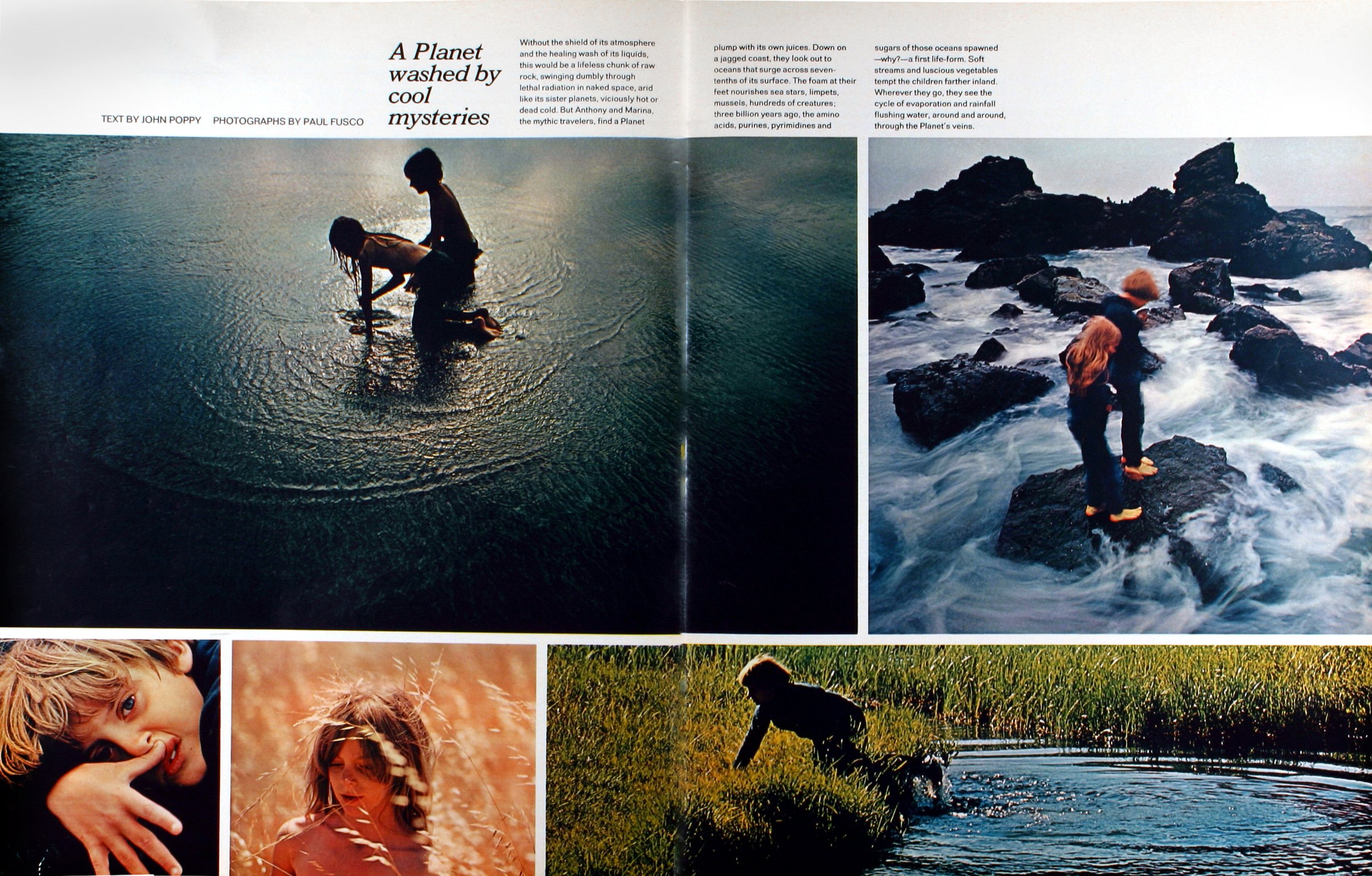
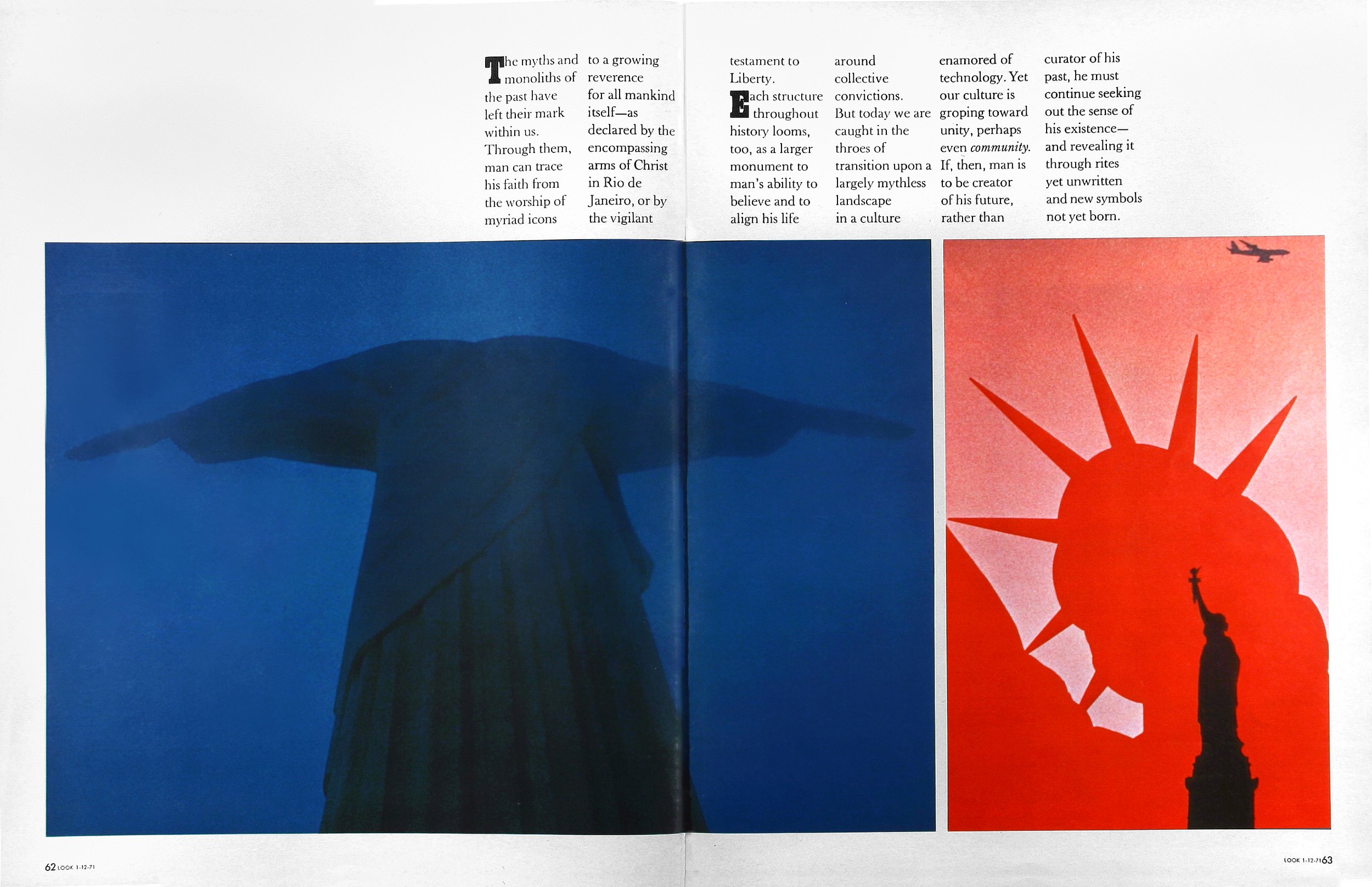
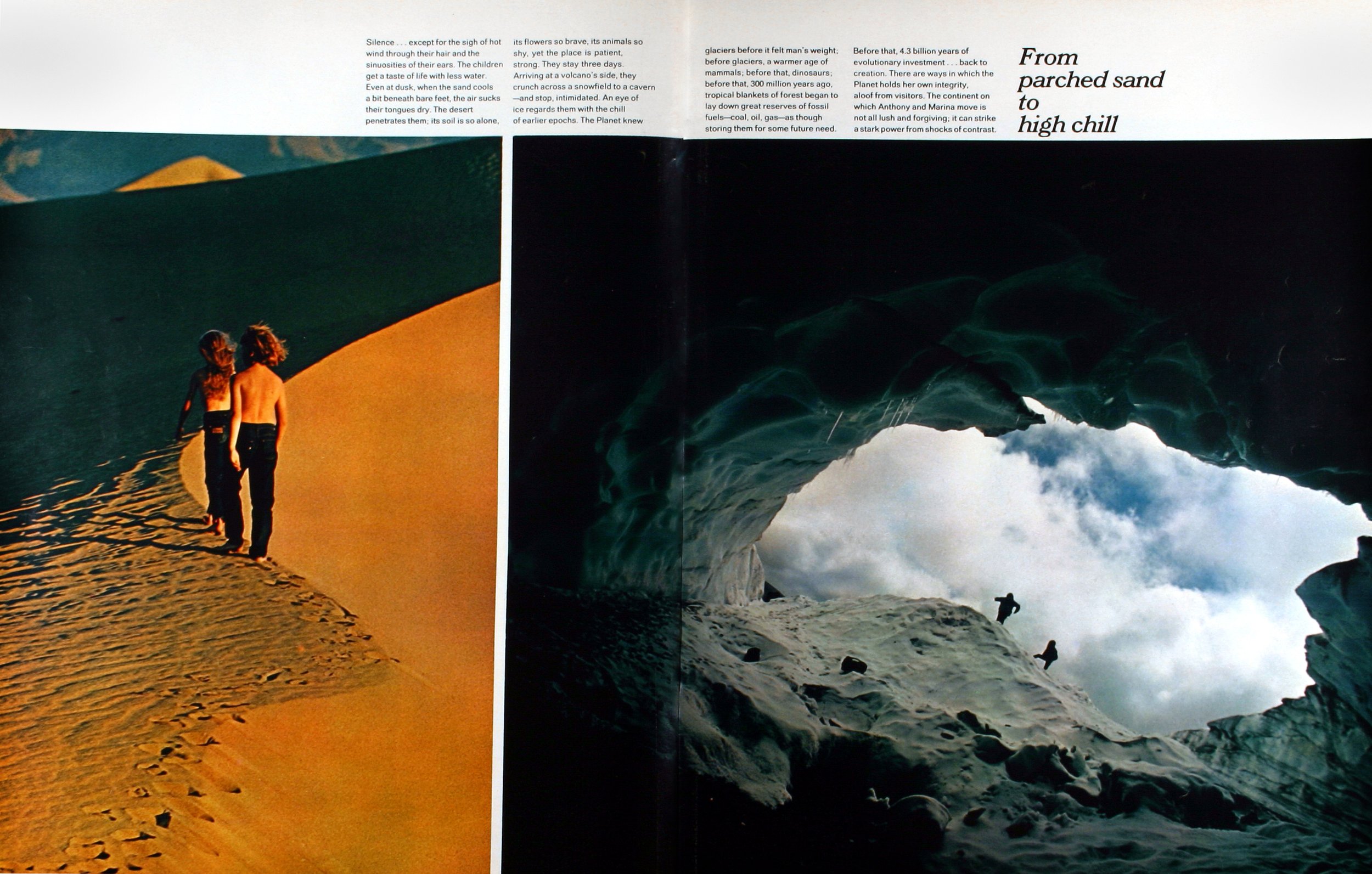
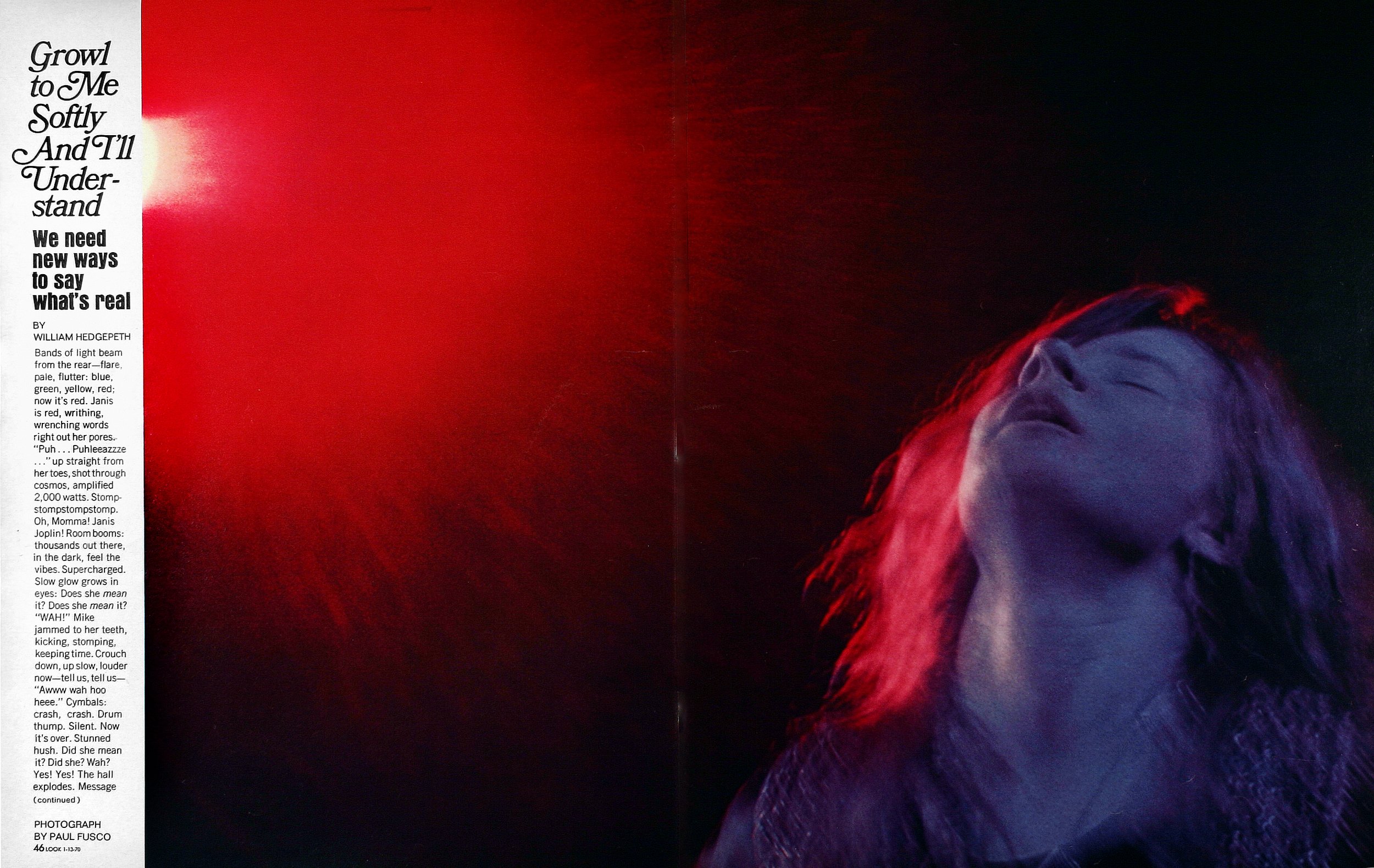
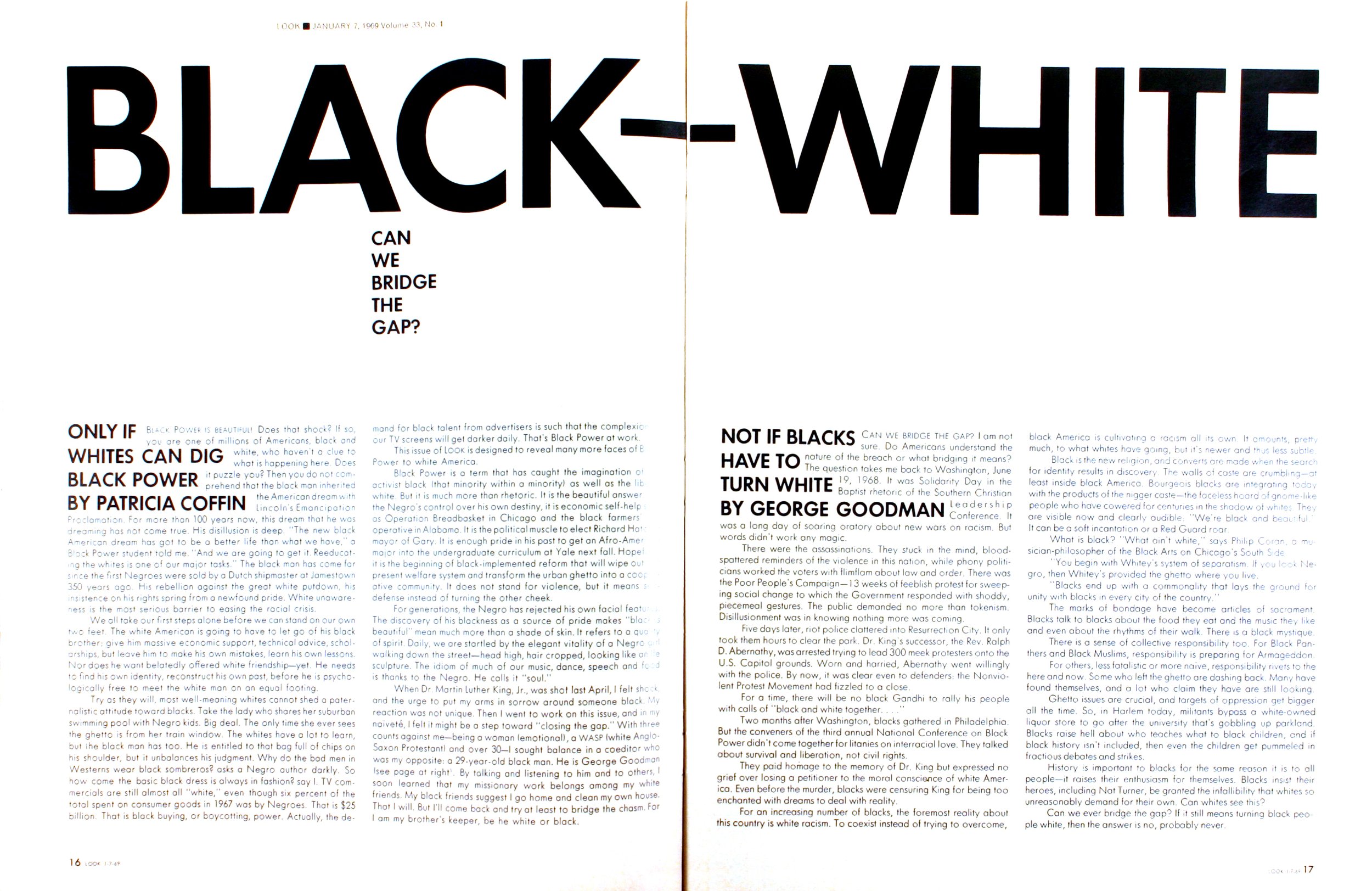
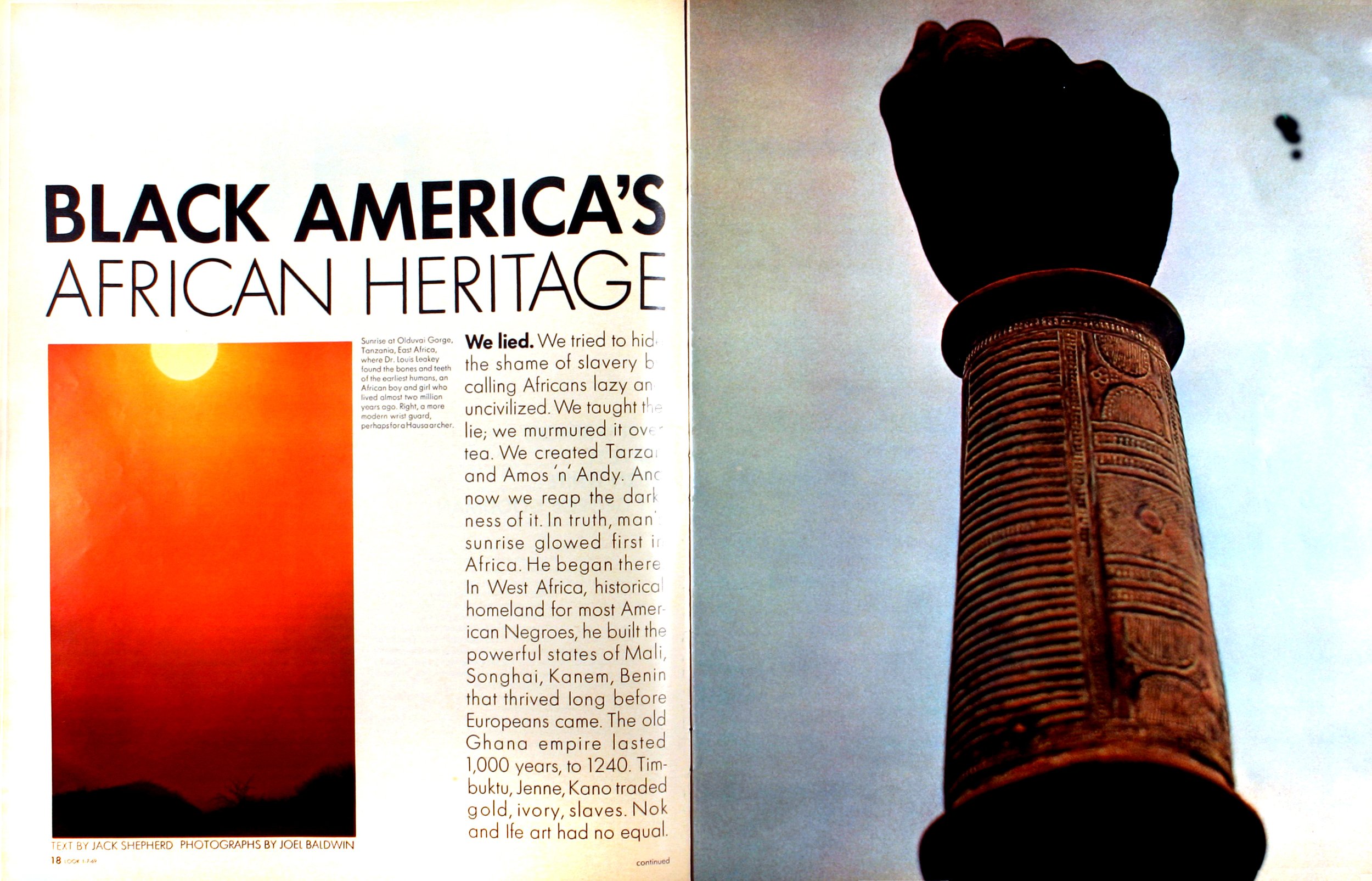
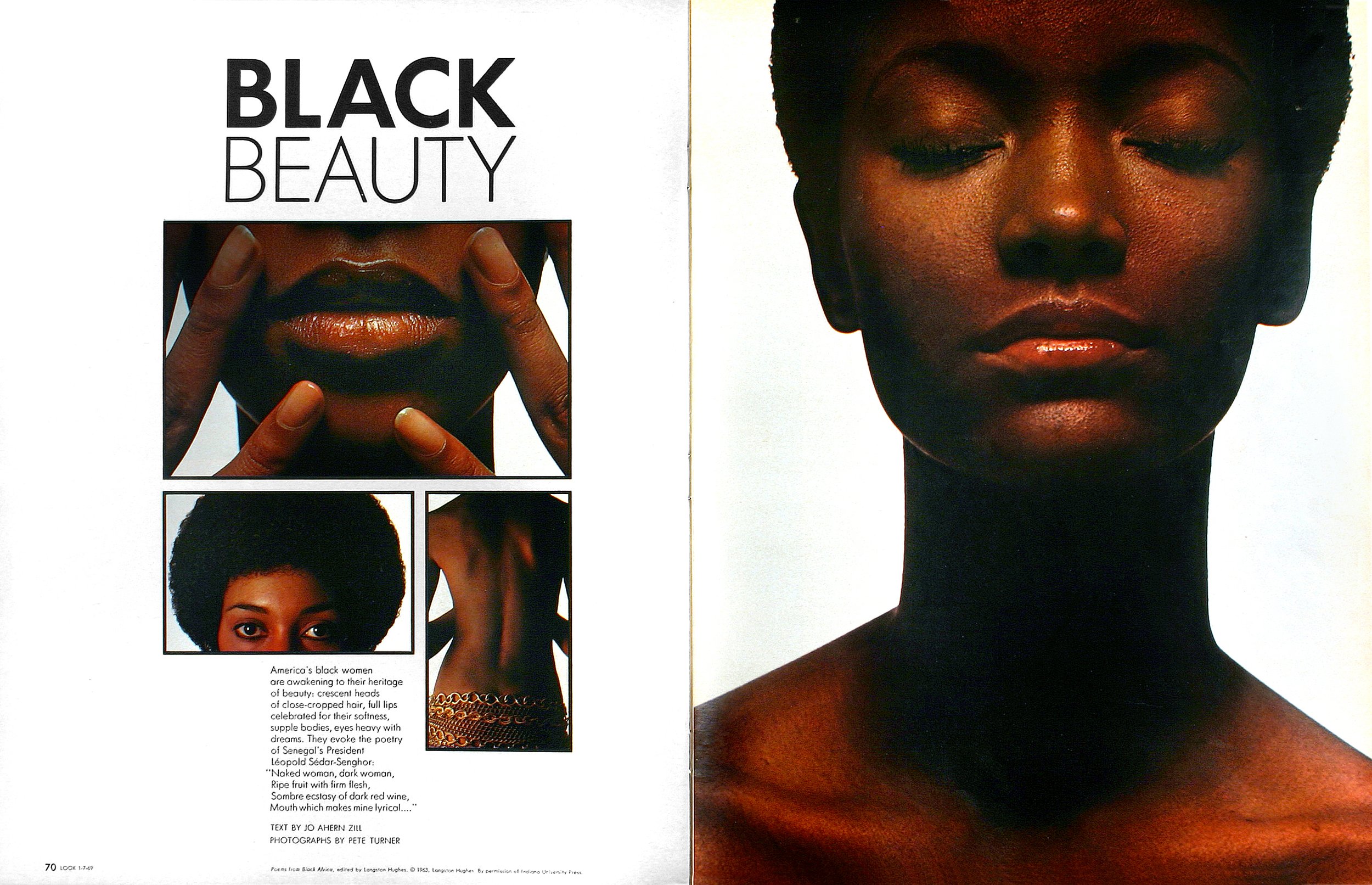
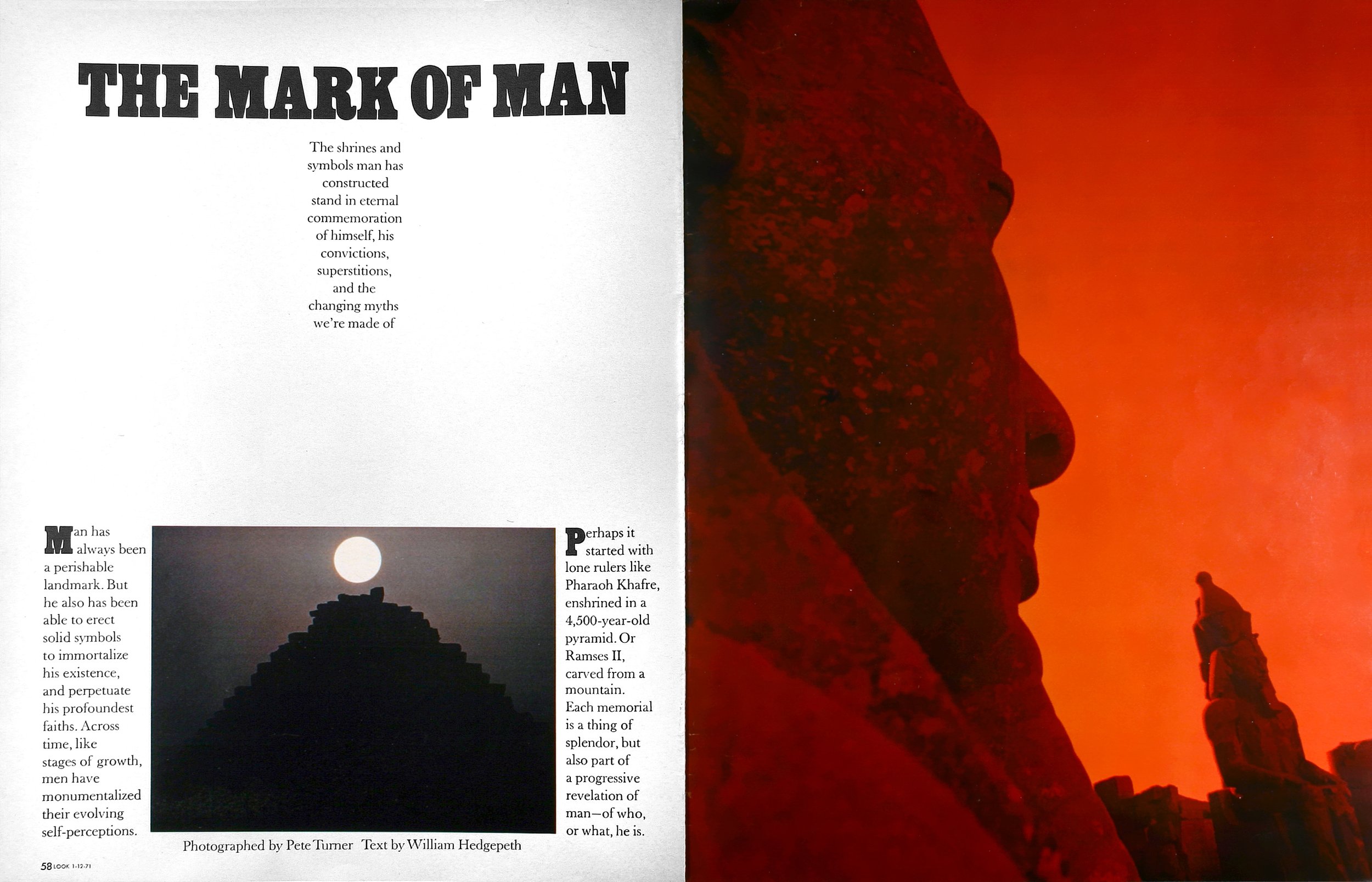

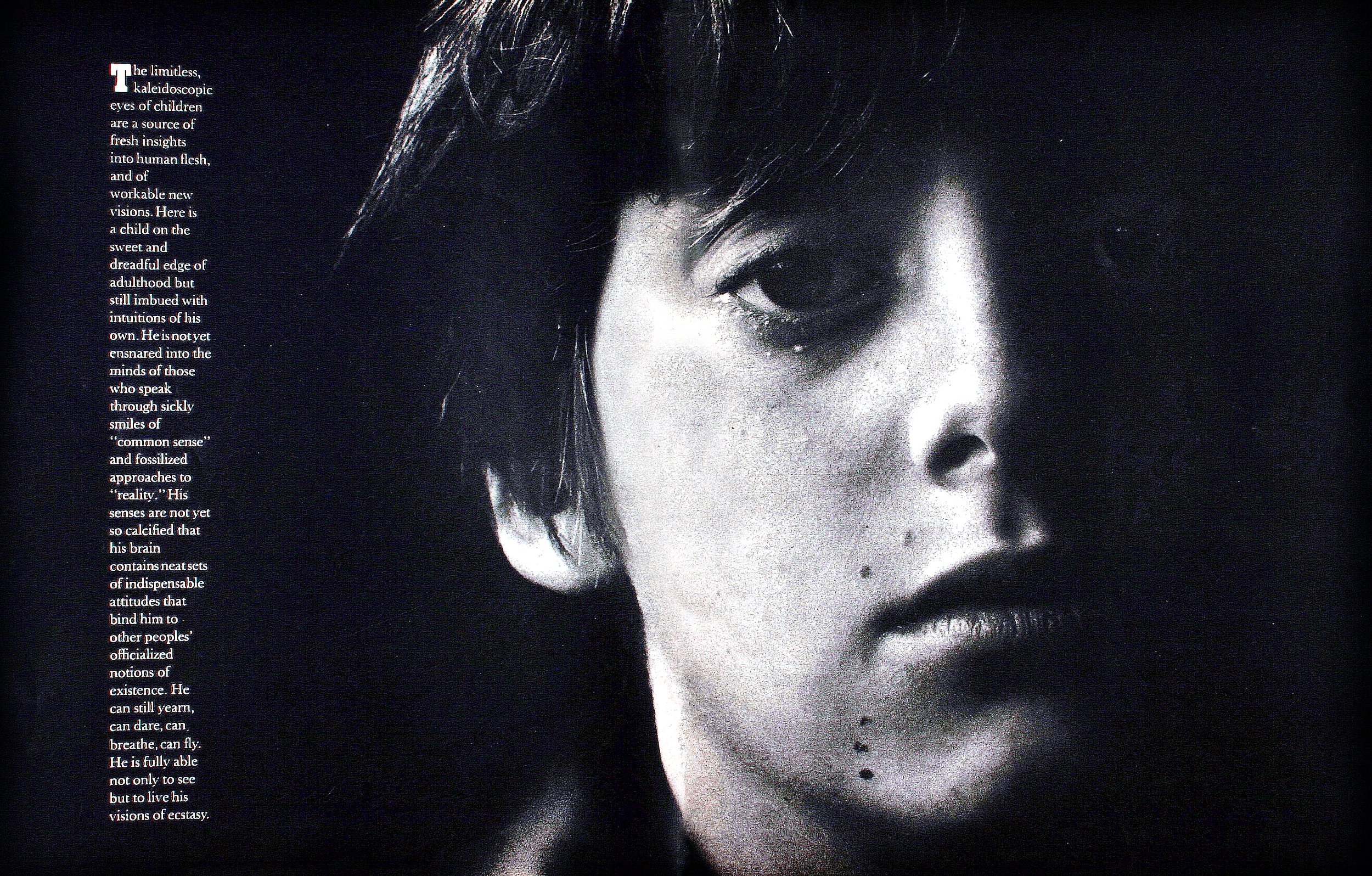

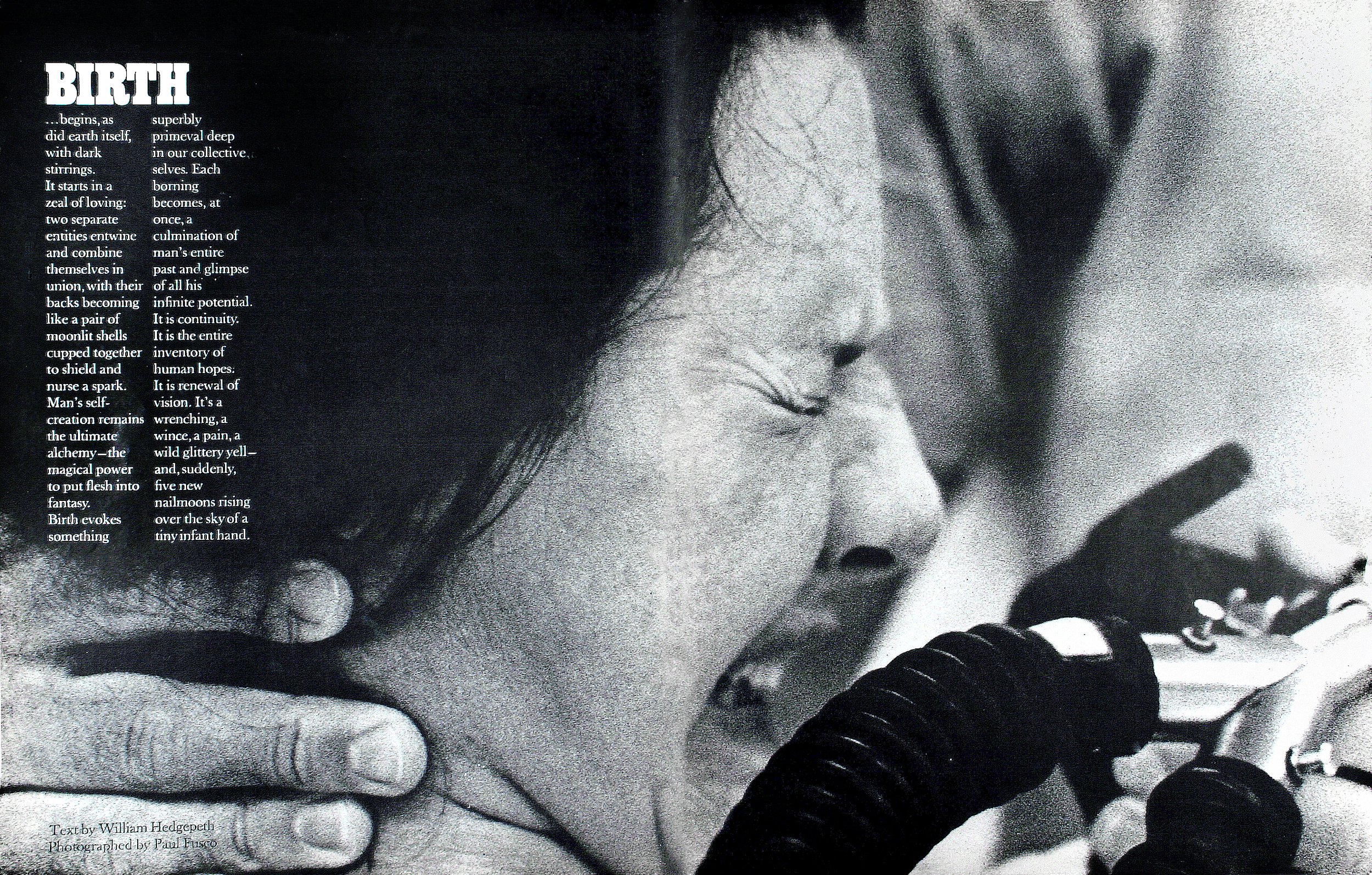
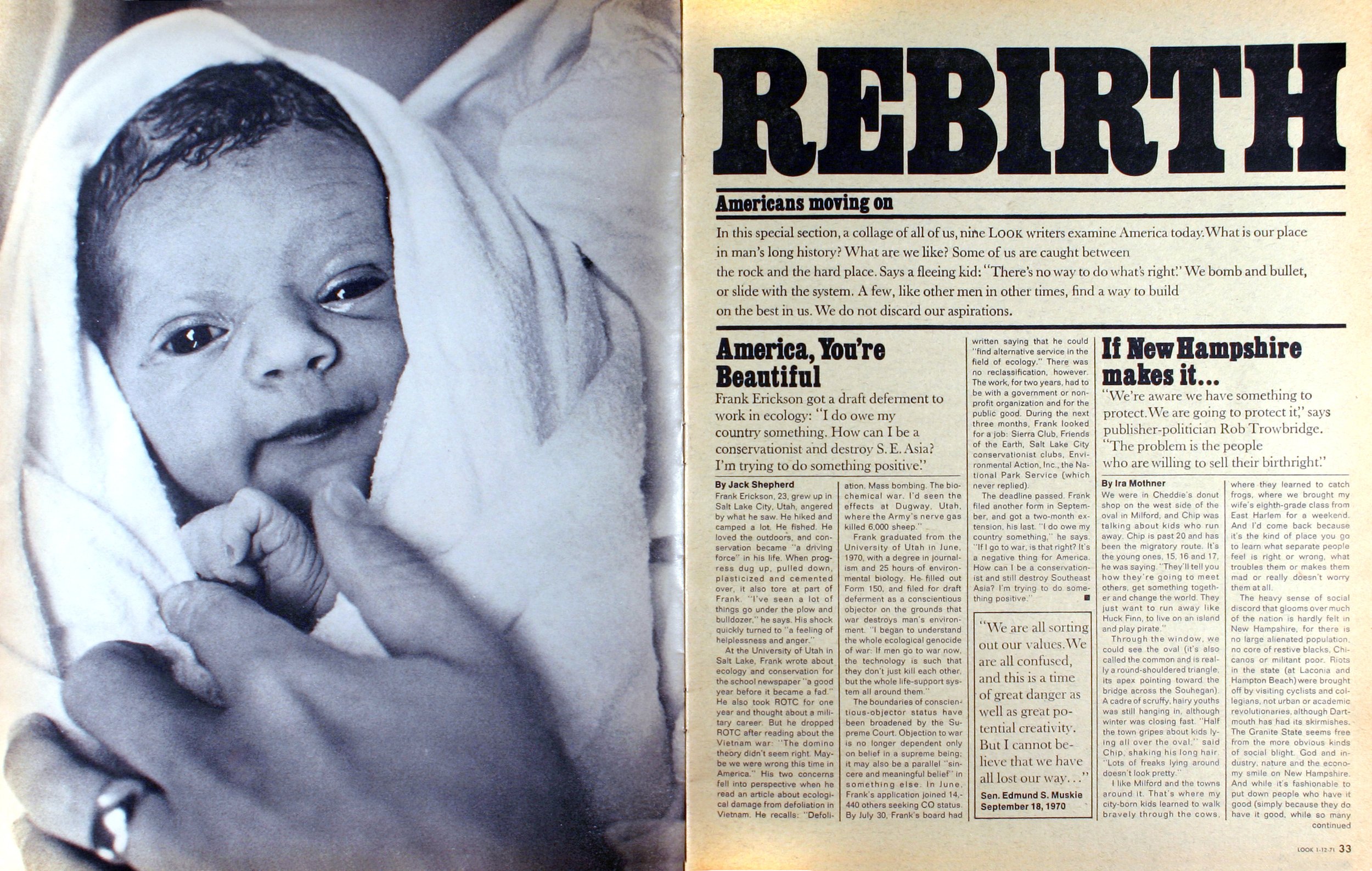
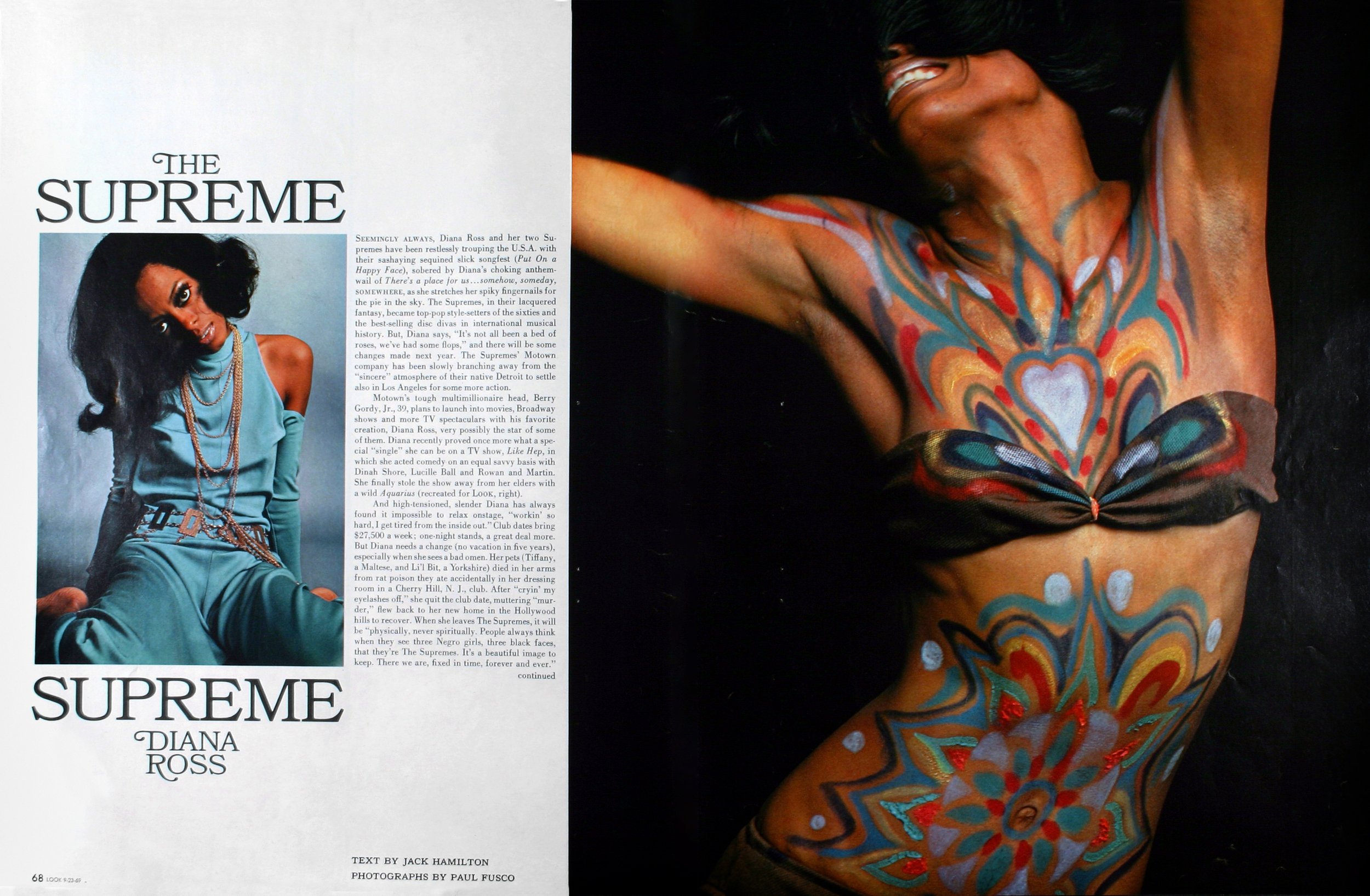

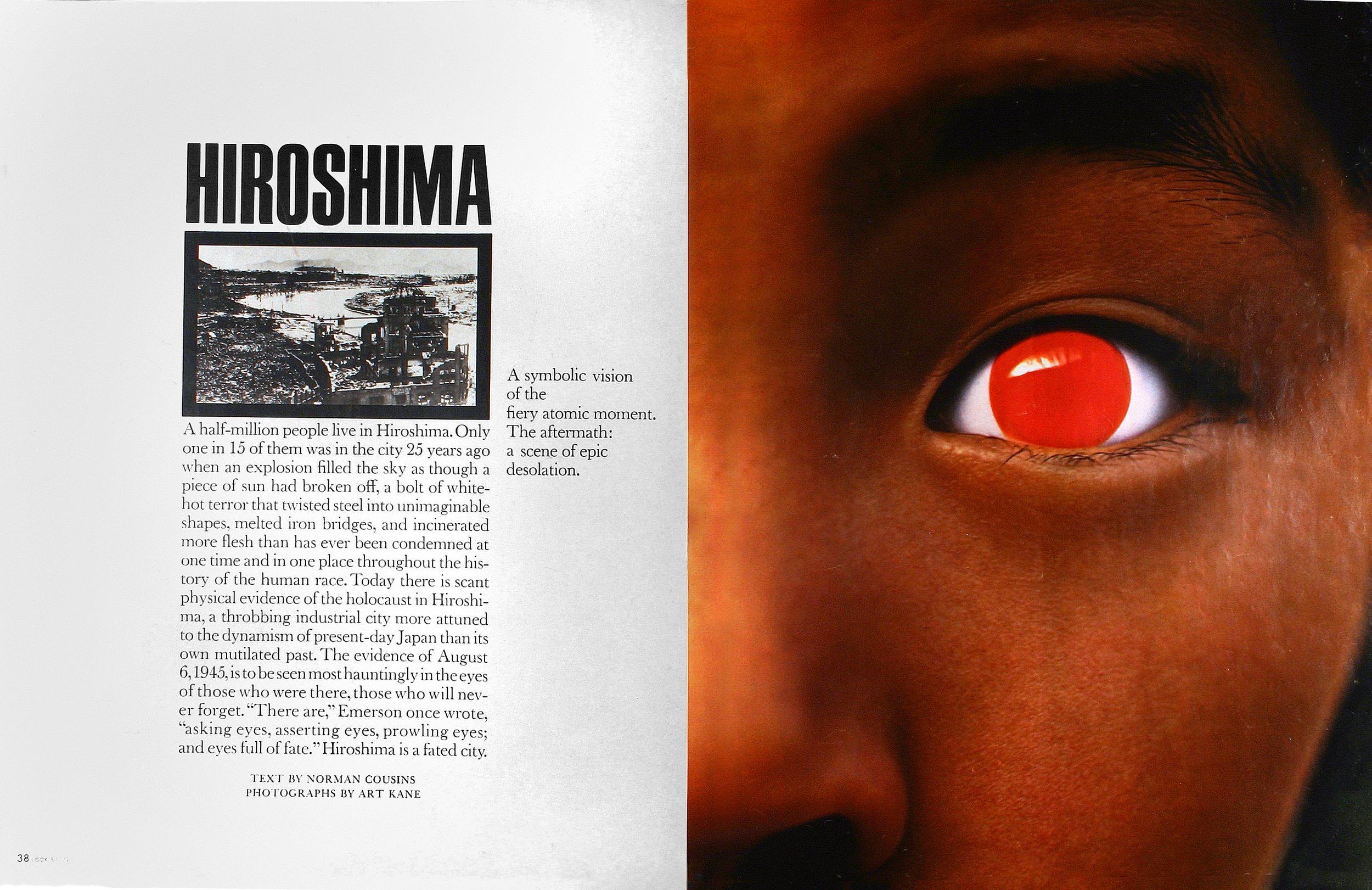
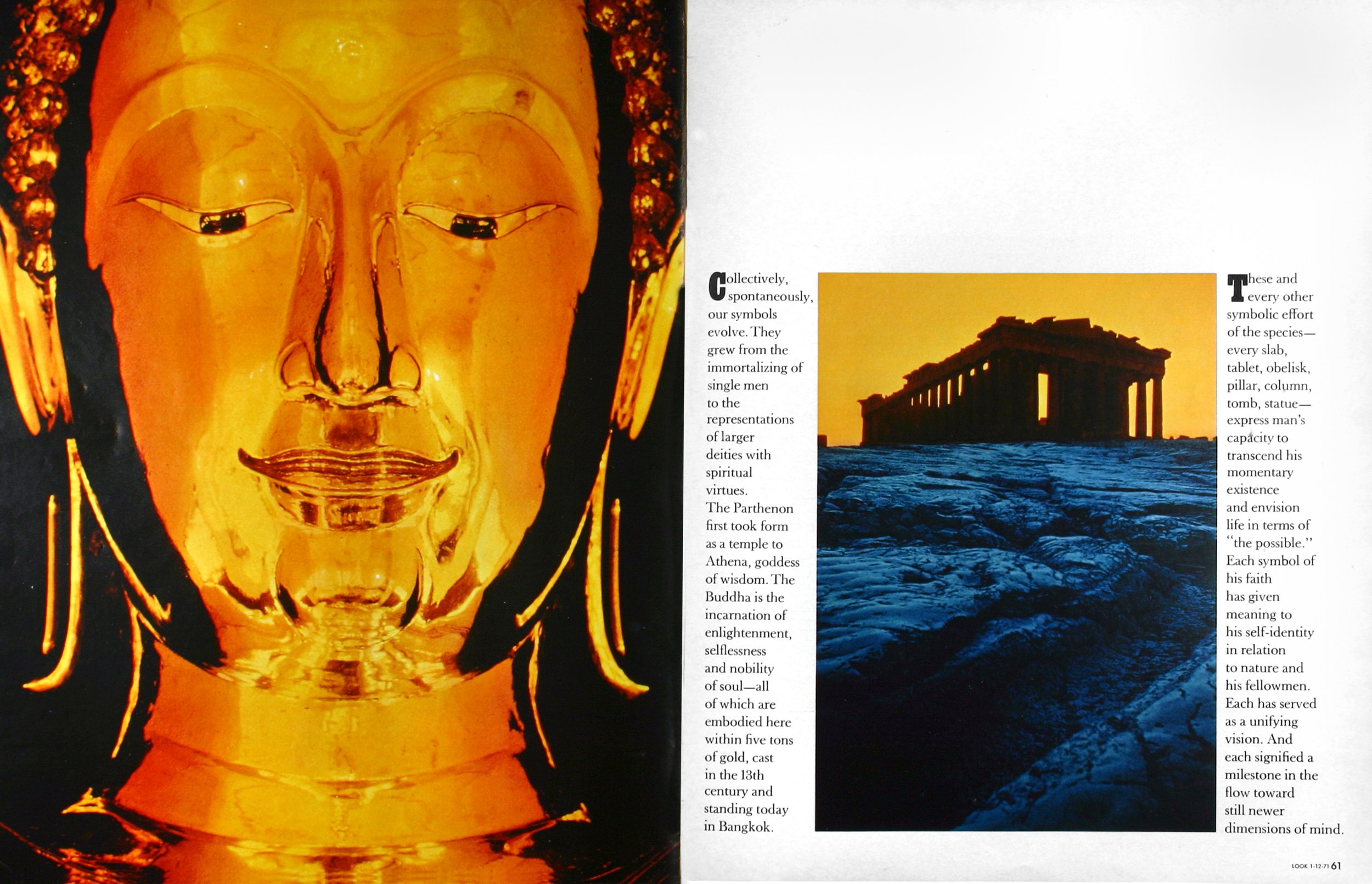
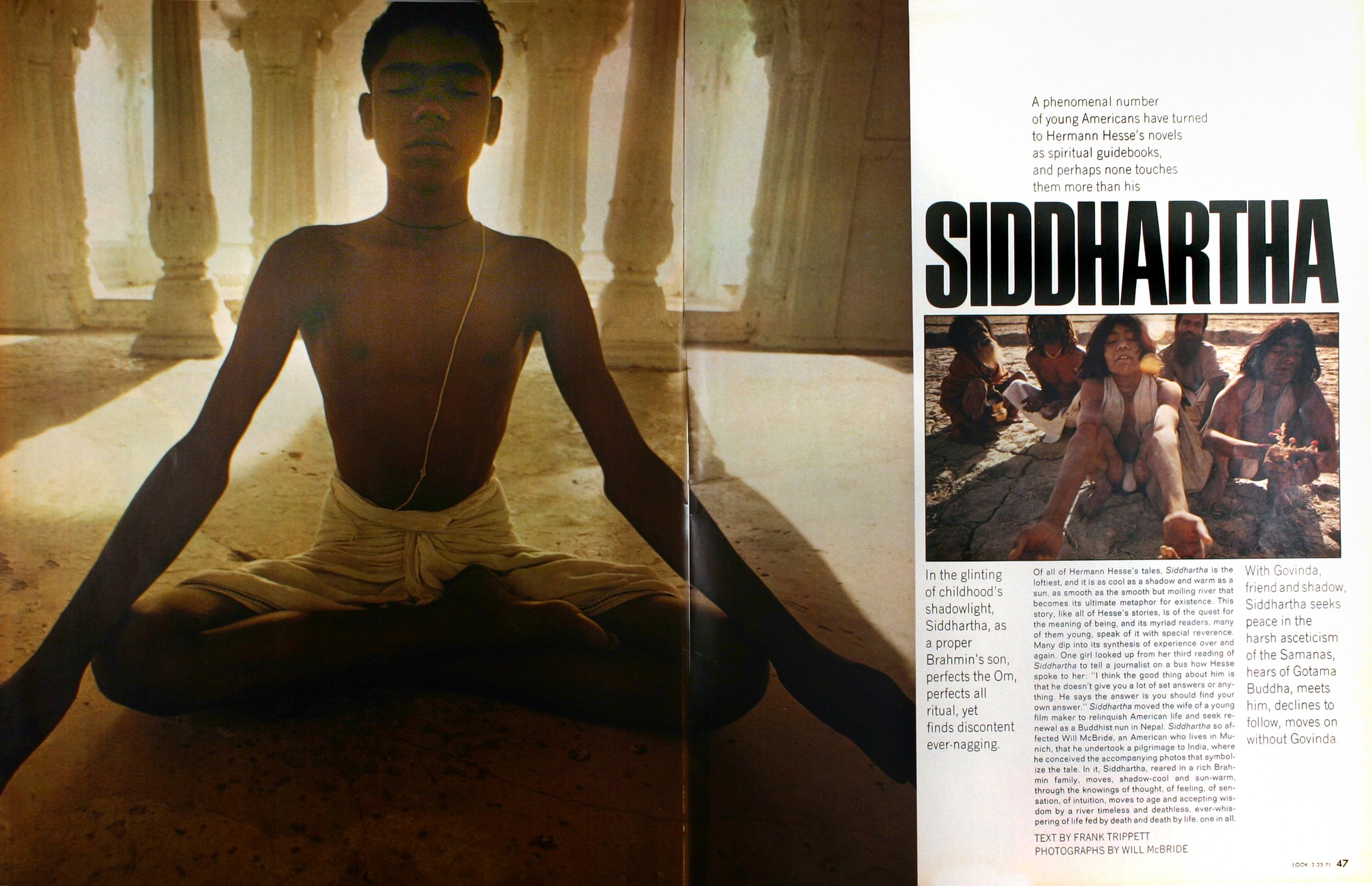
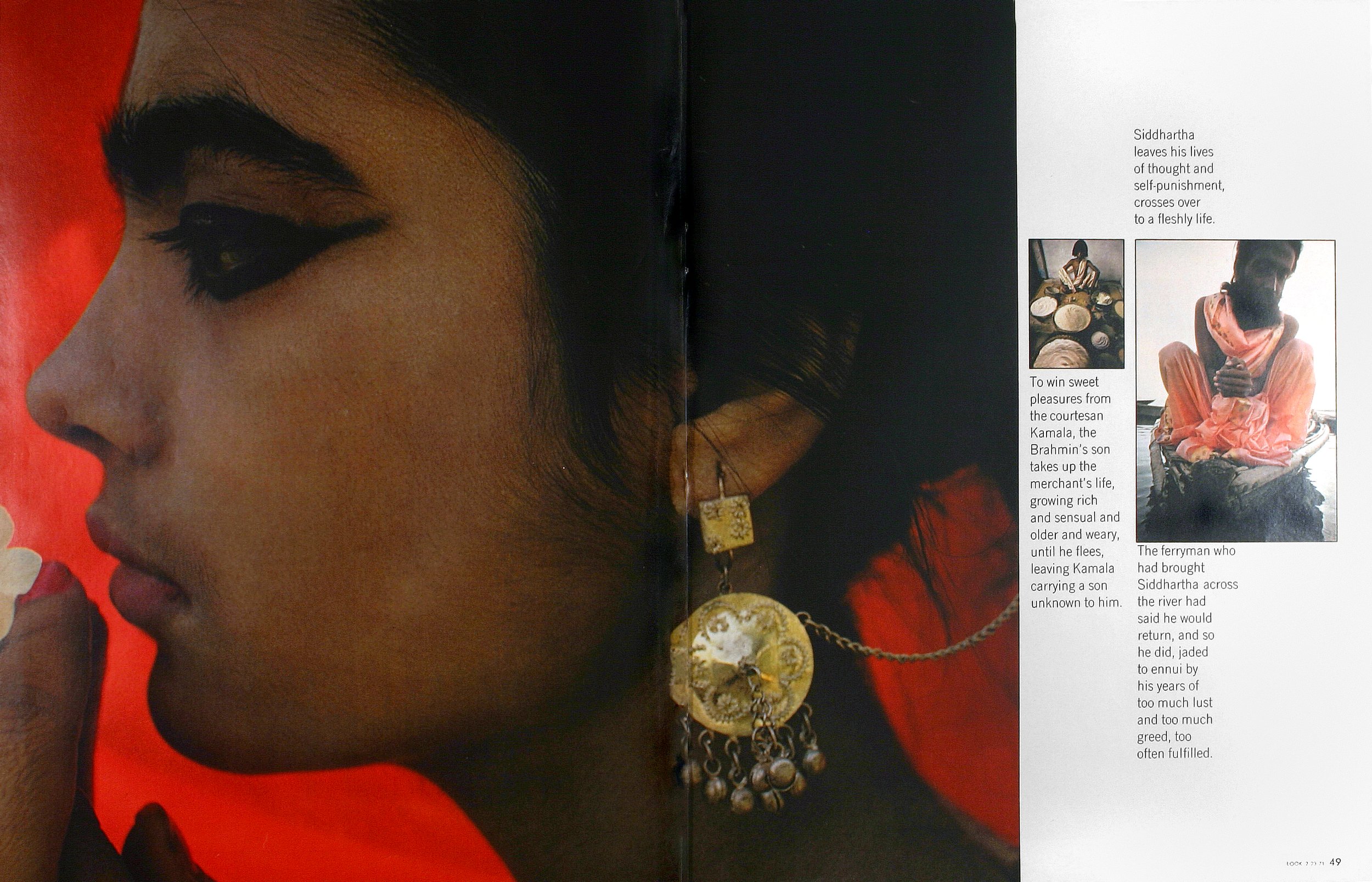
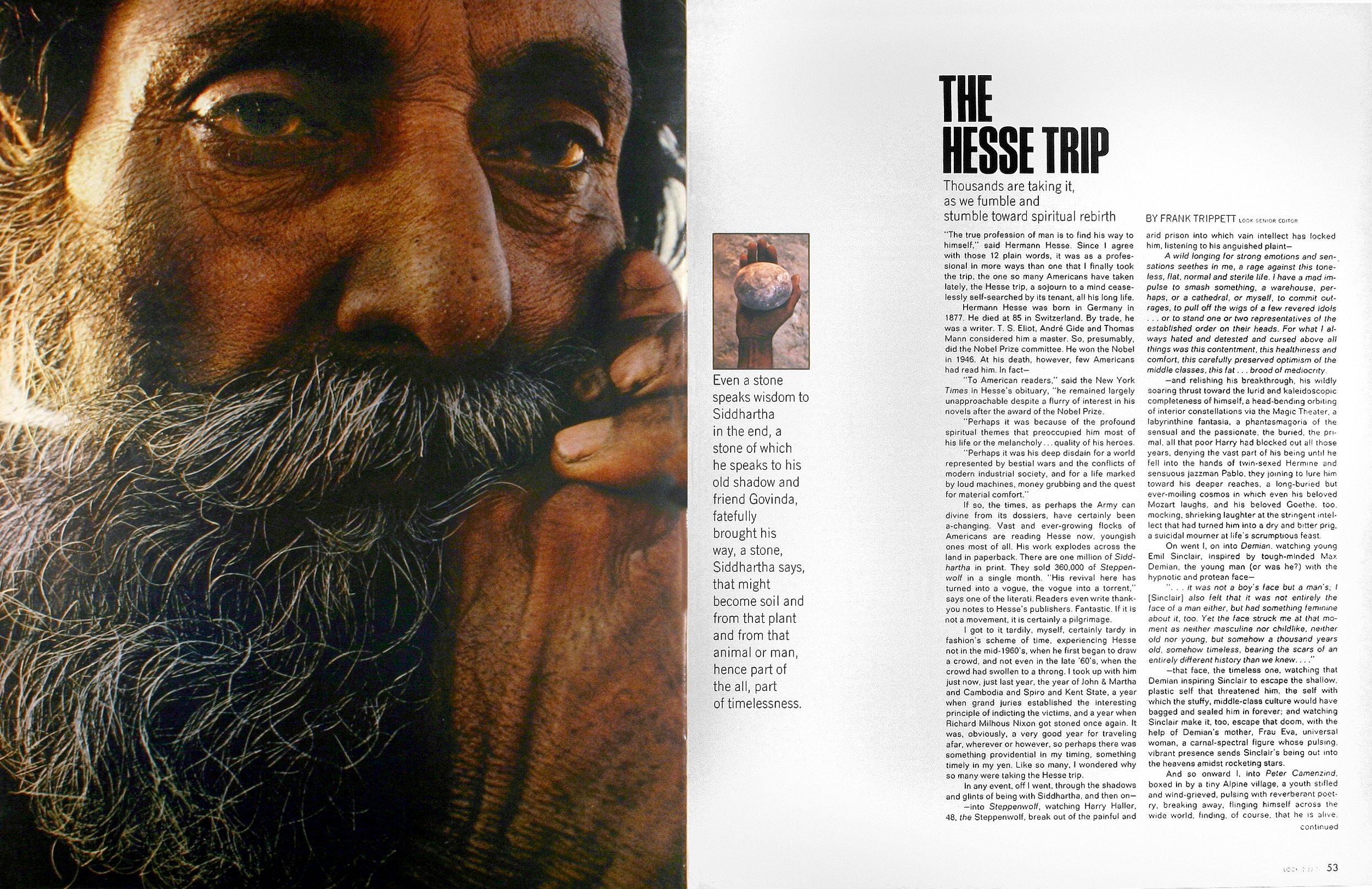
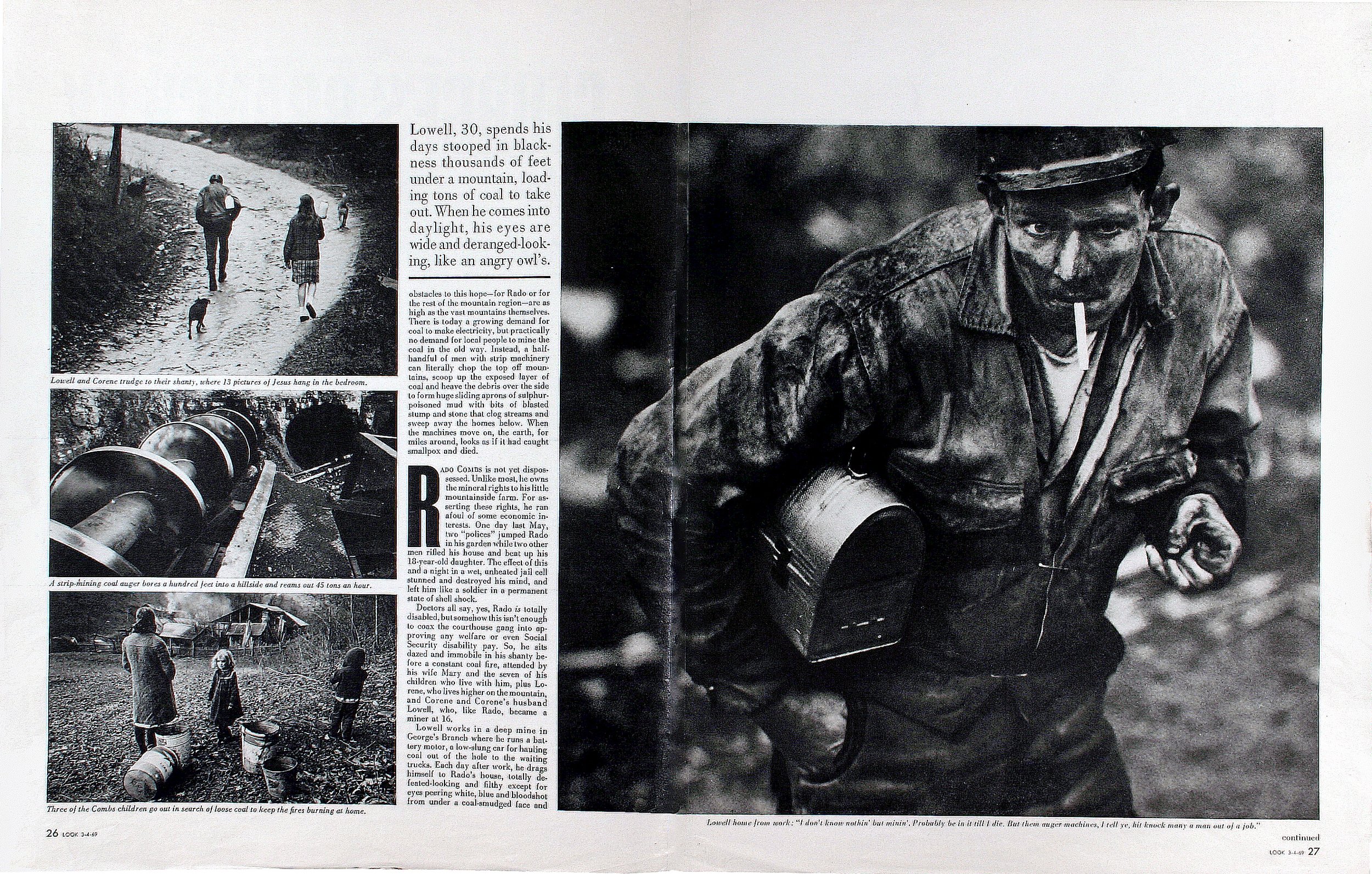
George Gendron: And now, keep in mind, this is, like, two years before the Club of Rome had even published their “The Limits to Growth,” which put climate change and sustainability on the map. So you guys were way ahead of the curve, but, not only that, you decided not to publish the clichéd photos of environmental degradation. You want to talk about the art direction on that particular story? I think Paul Fusco did the photography?
Will Hopkins: Right. Yeah. He did most of the photos. George Leonard was the editor on that issue. And, he would come to New York and he would set up his office in this hotel room about a block from the office.
George Gendron: Okay, I’m liking this guy already.
Will Hopkins: And then we would go there and on things like that issue, we would get down—I mean, uh, I worked hand-in-glove with Fusco—and we were laying out all these pages and we were doing them on these little grid sheets. And then I would put them in my pocket and go back to the office and then start handing them out.
George Gendron: Someday I really gotta see what you have in terms of memorabilia for these so-called “little grid sheets.”
Mary K Baumann: One of the things that I think was key about both Twen and Look, was Willy Fleckhaus was an extremely strong art director and almost acted as the editor. At Look, Alan Hurlburt was equally as strong. And he was the art director who hired Will. And so he had these two great, strong art directors who were extremely editorially involved in the magazine. They weren’t just doing pretty pages. And I think they were very important for his career as mentors.
George Gendron: And you started a trend that continued through the decades during the heyday of magazines, which I came to really resent. And that was that you art directors ruled the goddamn place. You were, you were art directors editors in chief!
Will Hopkins: Well, I don’t think it was quite that.
American Photographer, New York, 1978-1985
George Gendron: No, I know, I know. But, having come from the other side of the newsroom, I just have to point that out.
Mary K Baumann: I think that you as an editor are very visually aware, George. But you know, it is interesting. I mean, I’ve worked for really good editors and some really lousy editors. And the lousy editors cannot really see how to pace a story visually or put it together conceptually. Whereas I think art directors, well, many art directors have that ability to, almost like a movie director, direct how a publication unfolds.
George Gendron: You know, the reason I guess I focus on this is that my first job was at New York magazine. And when we moved from 32nd Street to 41st Street, the art department, the design department was adjacent to the newsroom. So my four-square desks were a couple of feet from people like Walter Bernard. And Milton [Glaser] was constantly there from Push Pin and I took it for granted that magazines were run by these teams—these editorial and design partners. Boy, was I wrong about that! I thought that was the norm.
So I’m curious about the social side of your magazine life during your period at Look. Who were your friends? Who were your buddies? Who would you go out and have a beer with?
Will Hopkins: Well, my friends were mostly the West Coast guys. George Leonard, and John Poppy, and Paul Fusco moved out there, and, you know, Doug Kirkland was out there.
George Gendron: Did you guys have a big office out there? Or, what are you talking about? A bureau? What was it?
Will Hopkins: It’s more like a bureau. But they really hung out in Mill Valley. So every time I went out there I went to Mill Valley. I didn’t spend a lot of time in the city.
George Gendron: Yeah. I suspect you went out there often.
Will Hopkins: Yeah. As often as I could. I really liked them. I had a great time with them. And I learned a lot from them.
George Gendron: Were you still at Look when it folded?
Will Hopkins: Yeah. Mm-hmm.
George Gendron: What was the last day at Look for you? What was that like, Will?
Will Hopkins: Well, for quite a few weeks I would come to town from Connecticut and I had to go do something and I didn’t have any place to go. And I would go to Look. And I would go up and the offices were empty and my office was empty, basically, but I could go in my office and I could call on the phone, things like that.
American Photographer, Interior Pages
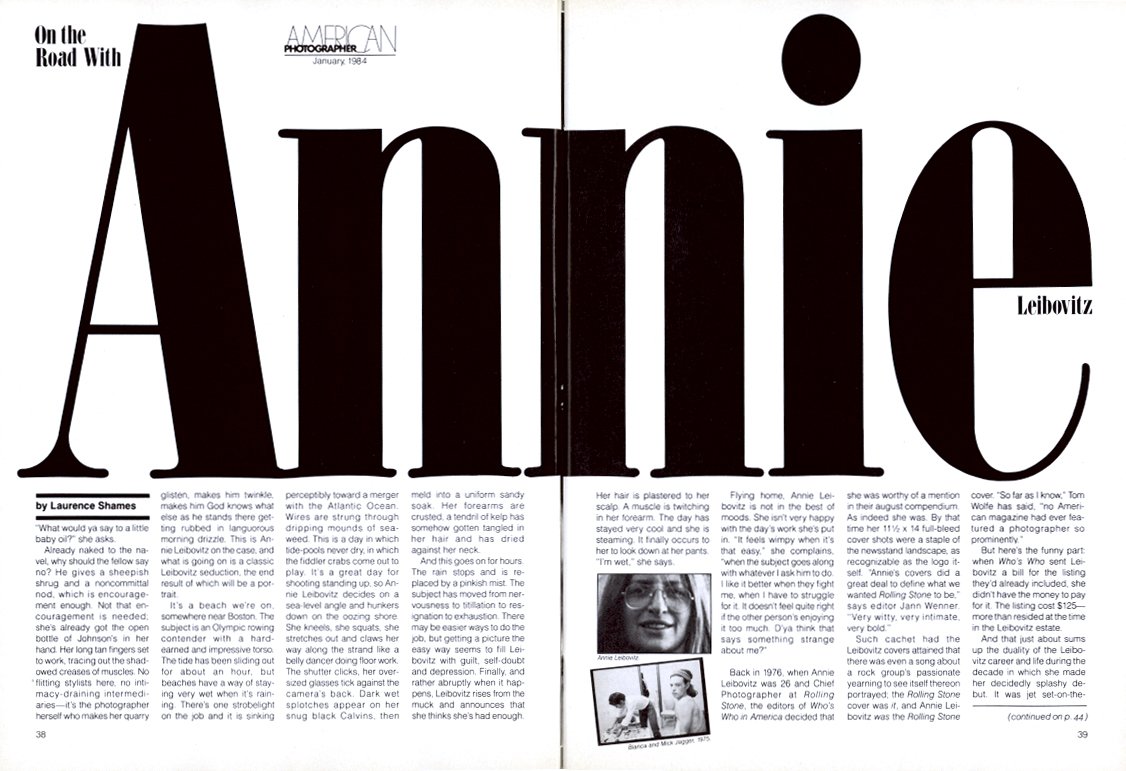
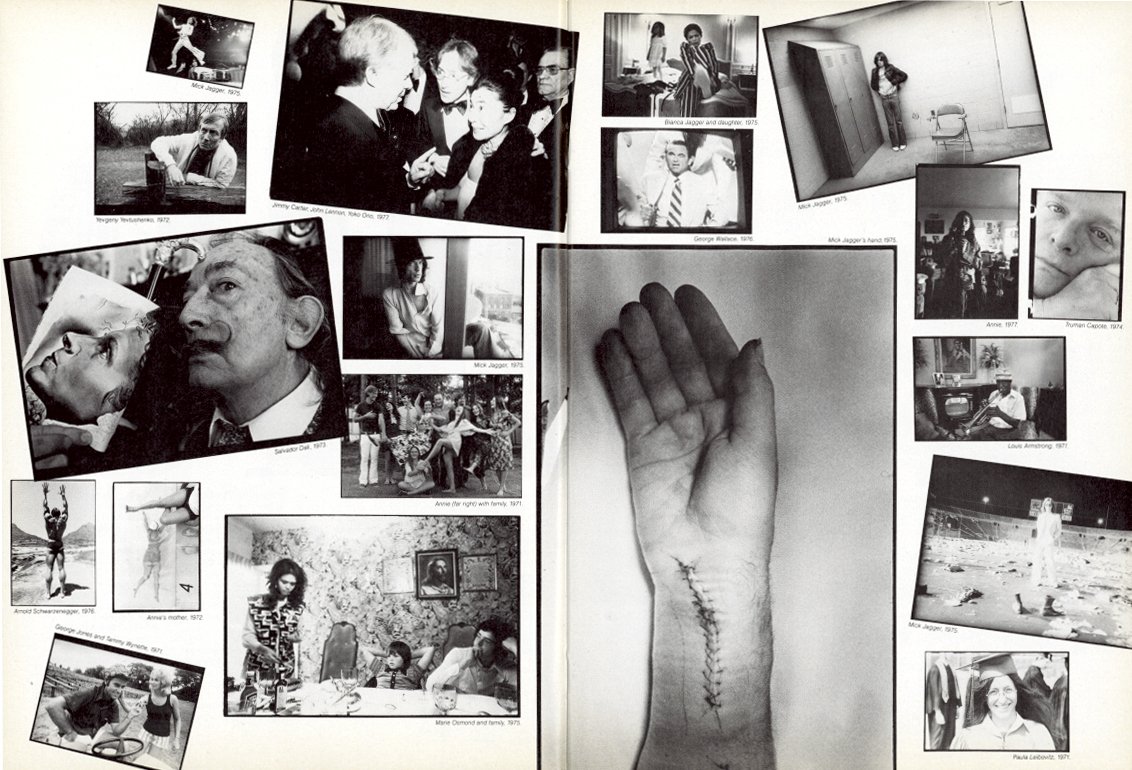


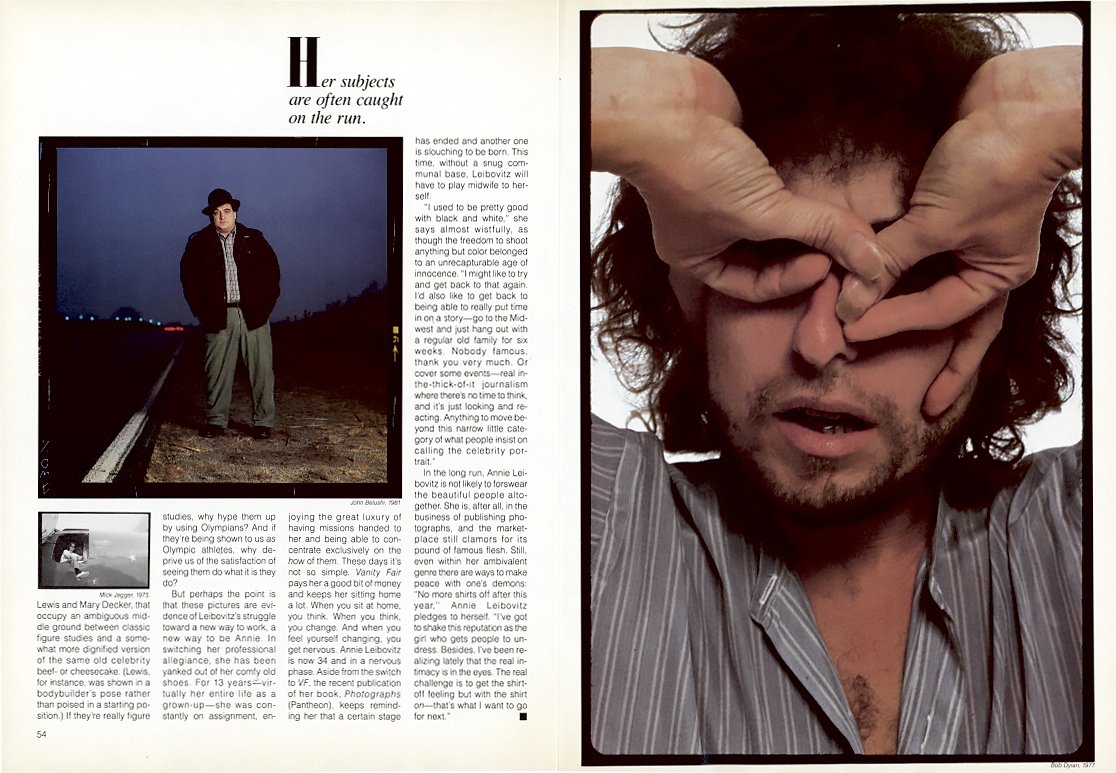
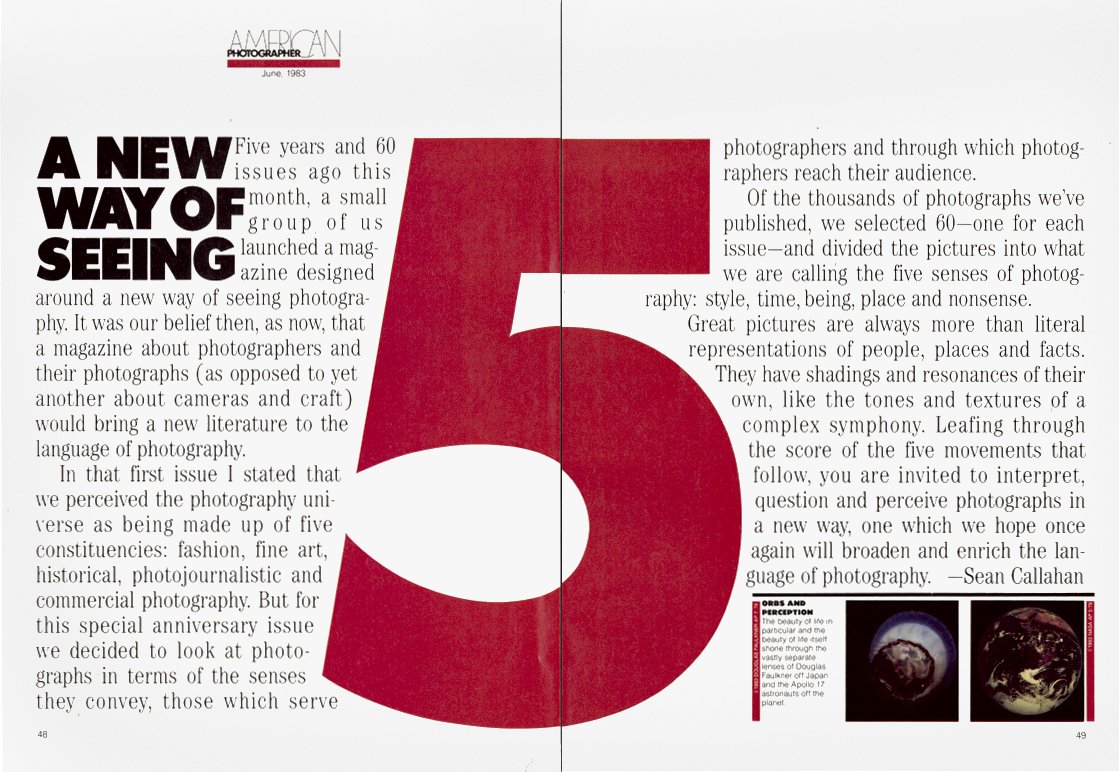


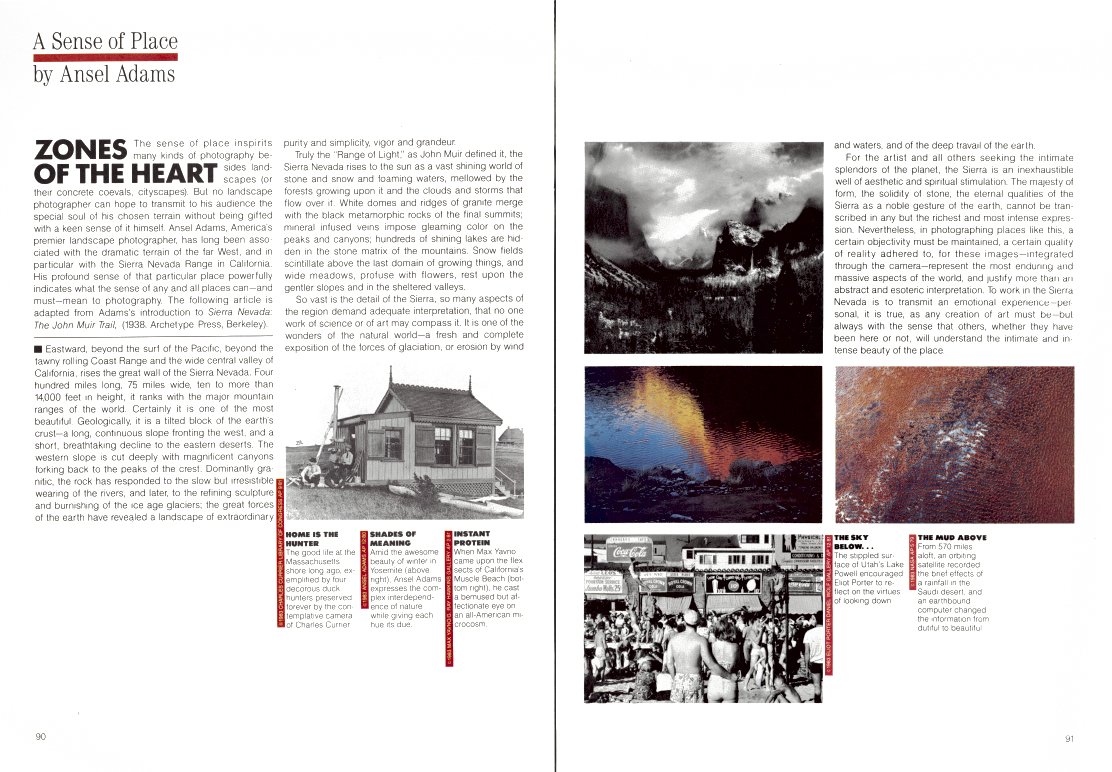
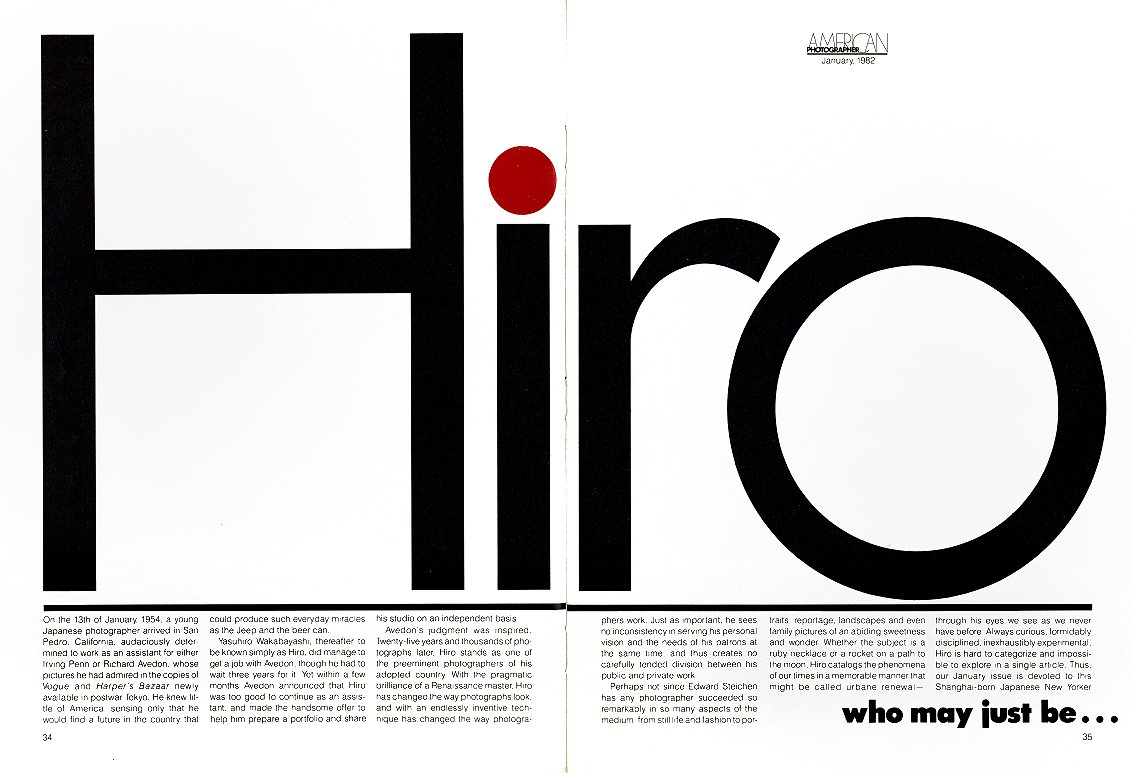
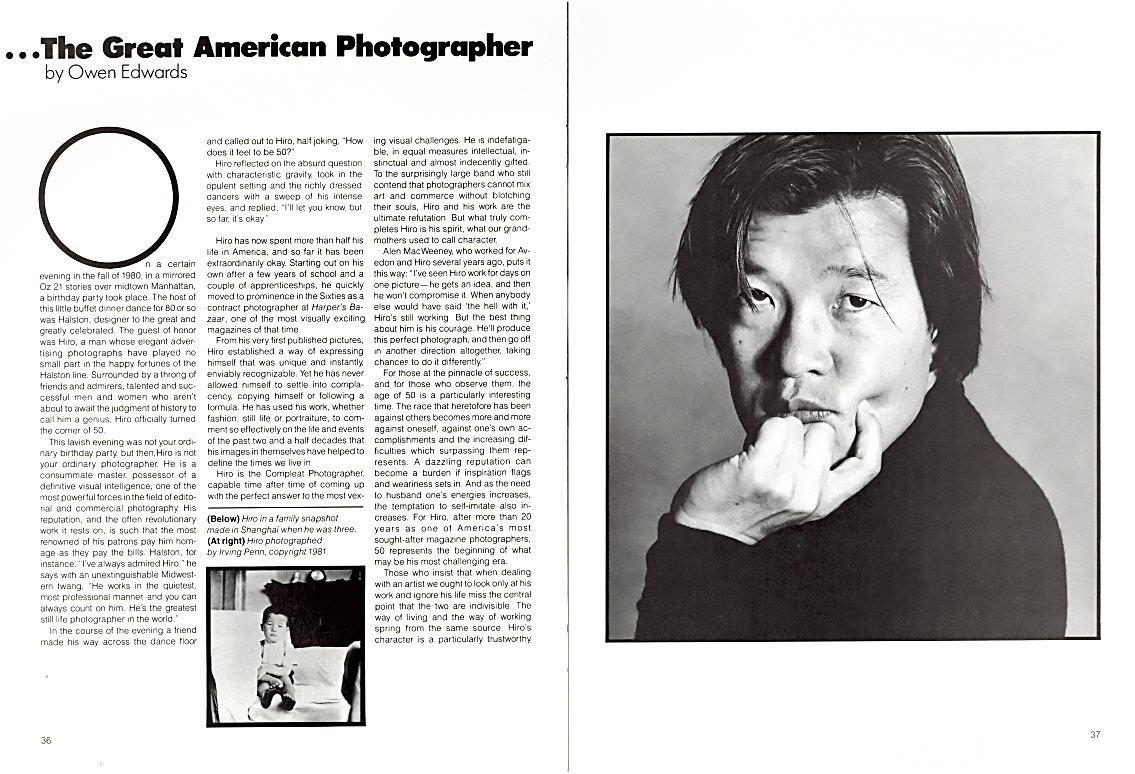

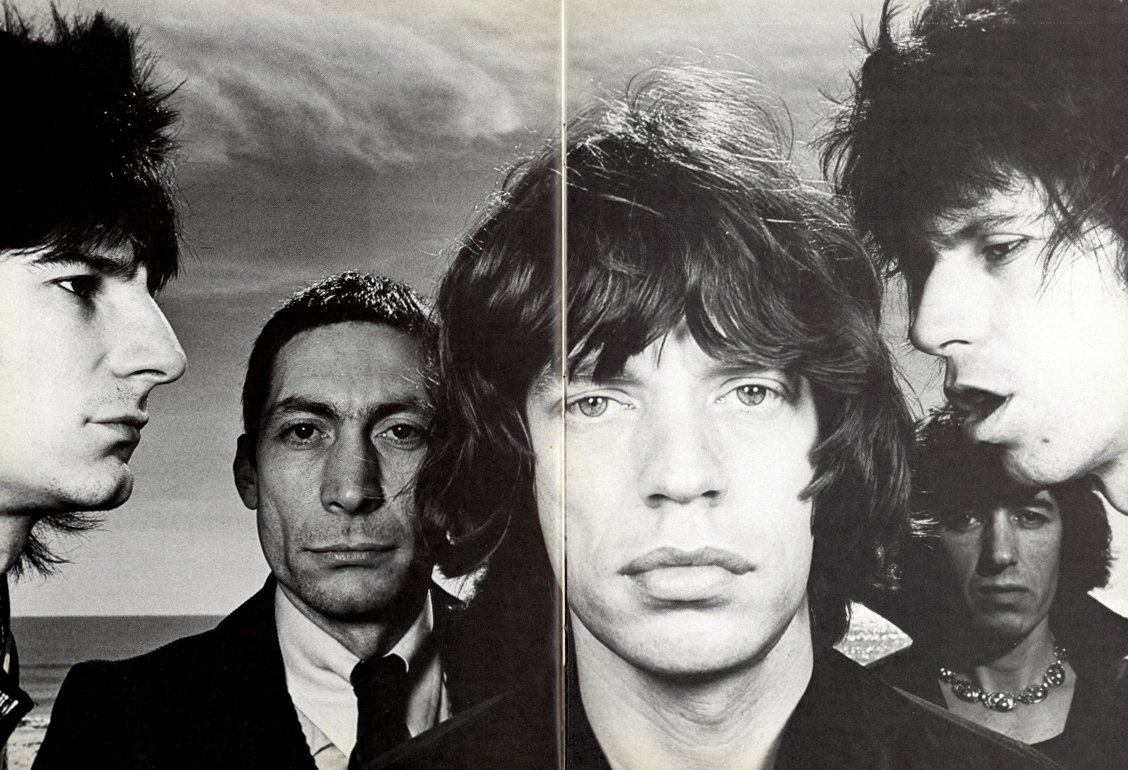
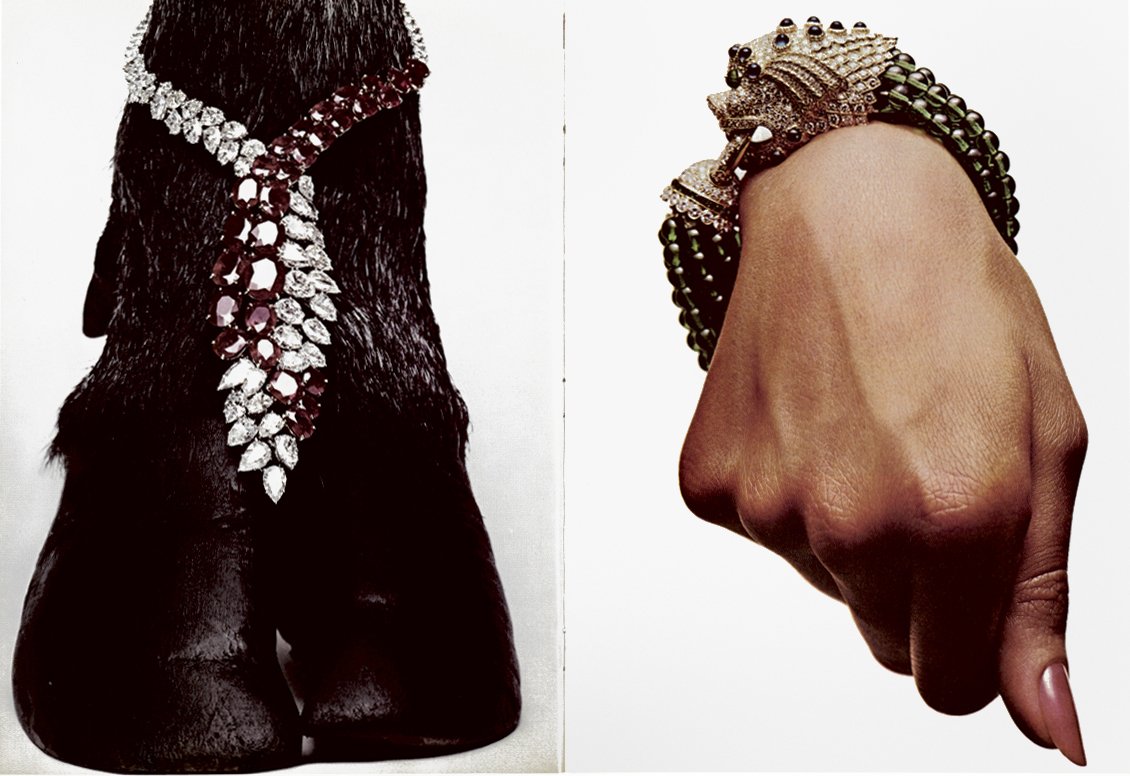
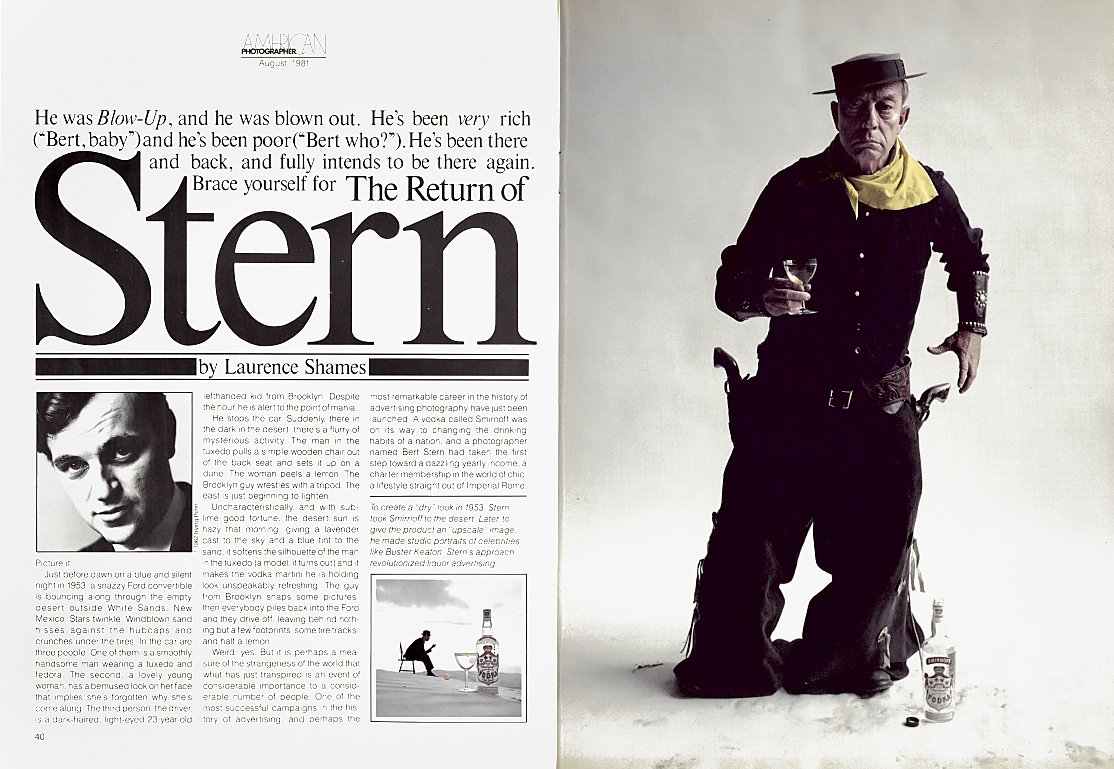
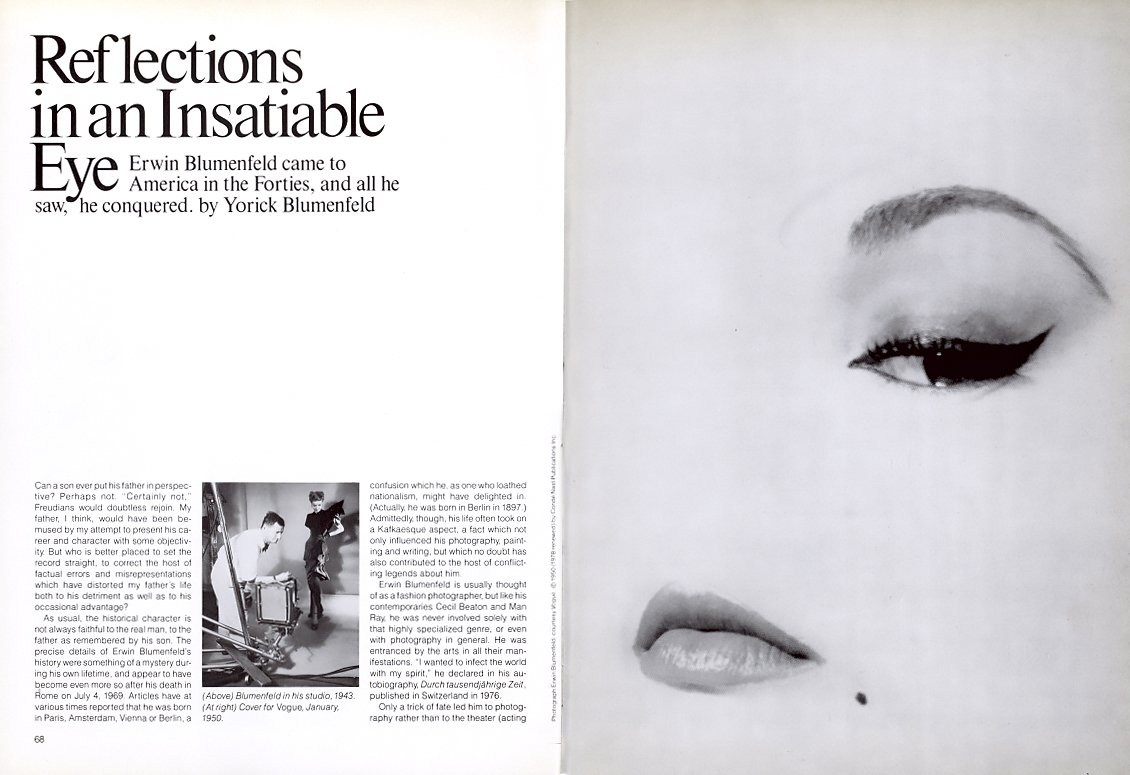
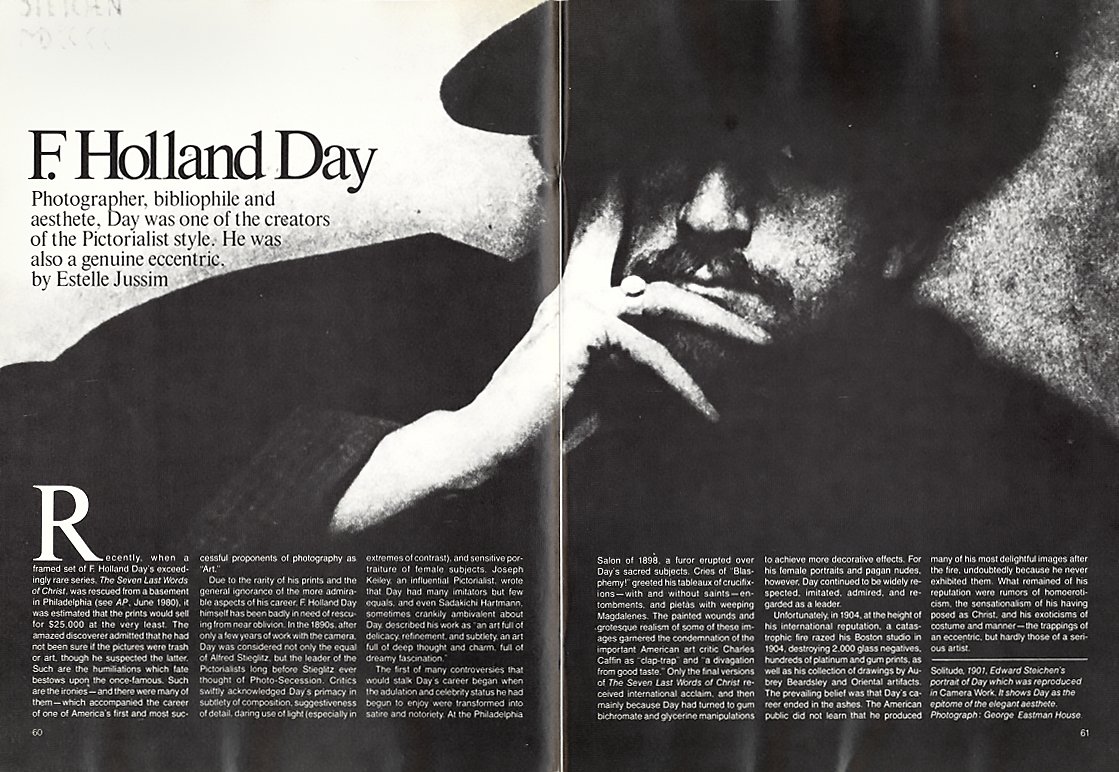
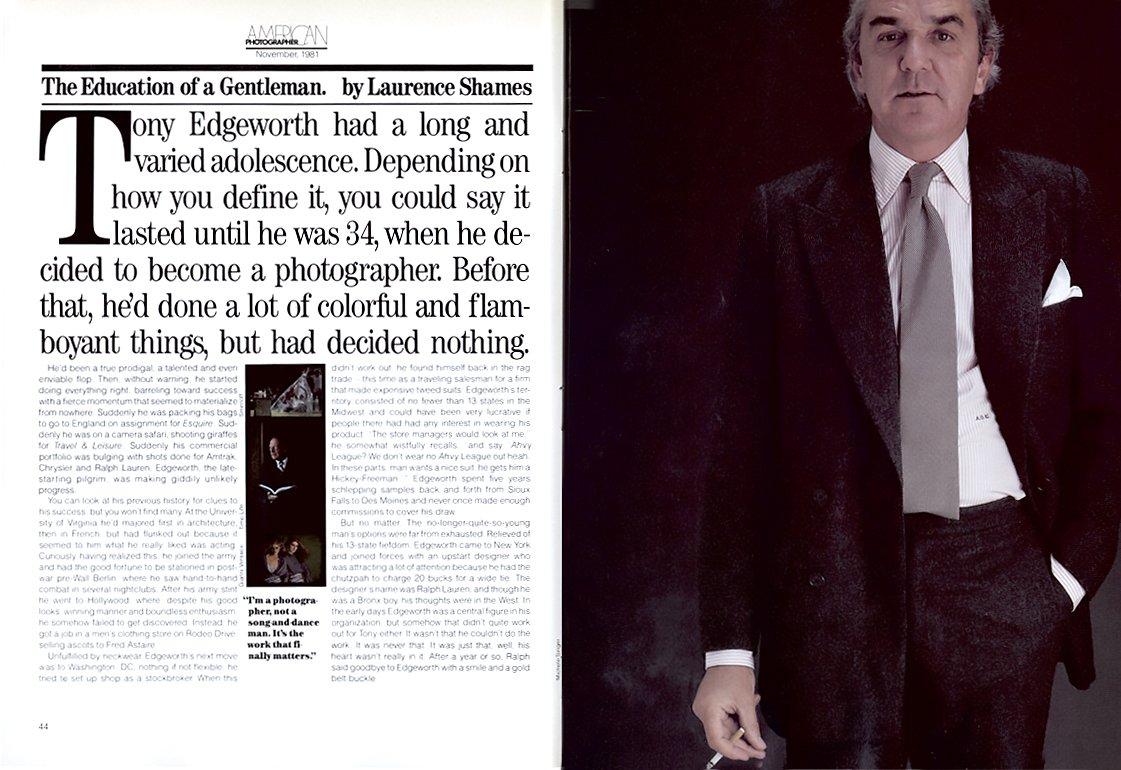
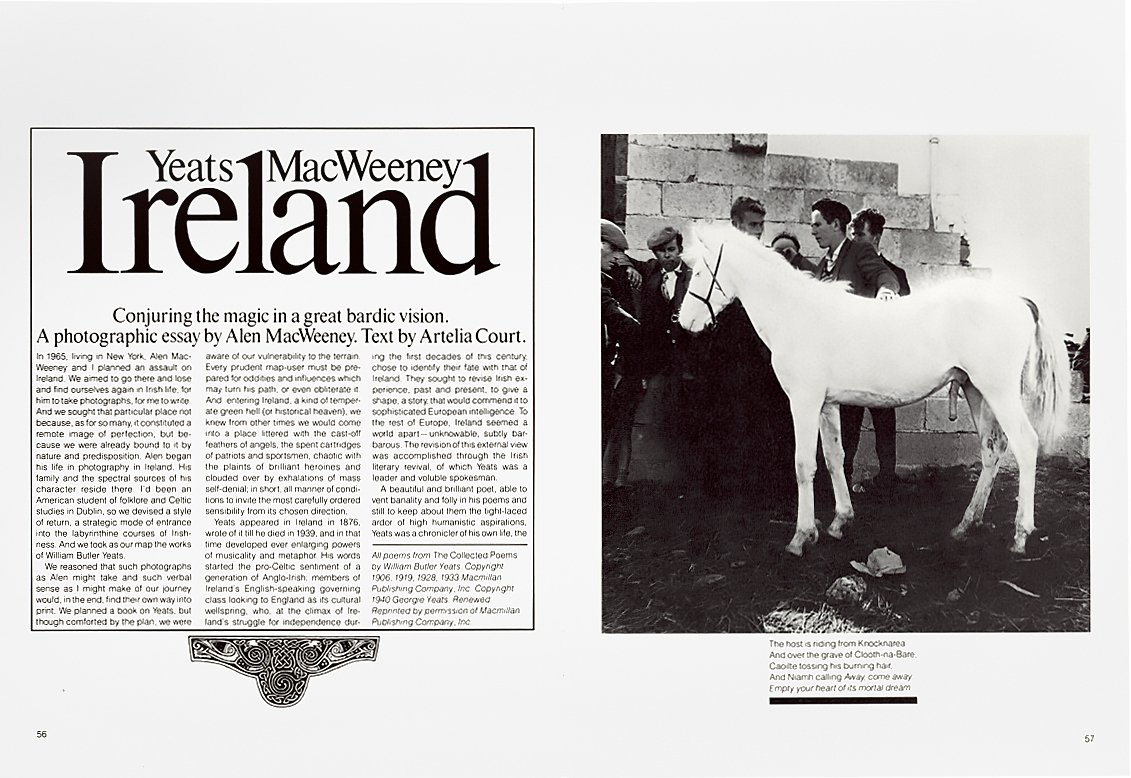
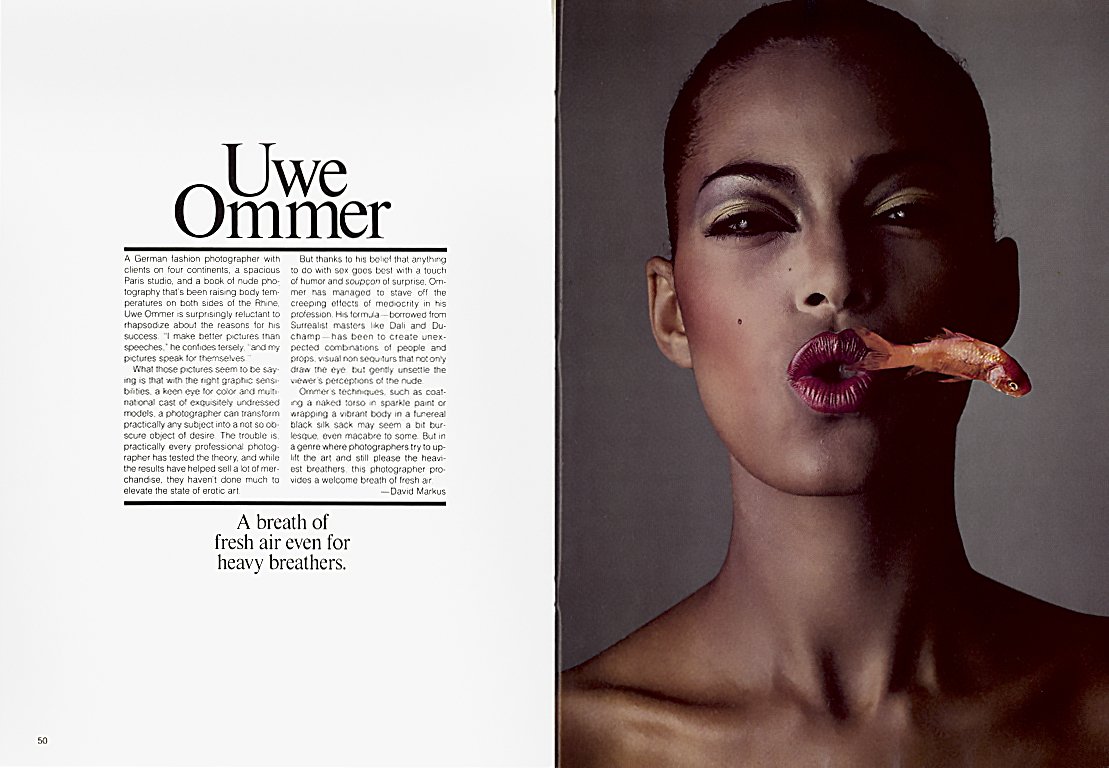
George Gendron: Were you looking for a job? What were you doing?
Will Hopkins: I was just … I was trying to find out what to do.
Mary K Baumann: One of the things that Will has told me is that on the last day, everybody was trying to get people jobs. So there were a lot of phone calls being made. Everybody was concerned about that. And you said that you were on the phone trying to get people jobs. Douglas Kirkland told me that he came in and he immediately got his images out of there.
Will Hopkins: Yeah.
Mary K Baumann: He took his images because they were donating the photography to the Library of Congress. For example, all of Paul Fusco’s images went to the Library of Congress and once they were in the Library of Congress, it was like hell to get them back out. But Douglas had all his images, so that was just a very interesting aside.
George Gendron: Yeah, That is really interesting. So back then having possession of the actual images was 99% of the IP battle, right?
Mary K Baumann: Exactly. So, I mean, Paul Fusco later—or was it Jimmy Karales?
Will Hopkins: Yeah...
Mary K Baumann: ... who did a lot of the very important civil rights images. He could only get ten of his images out at a time in order to make prints of his negatives. Which was difficult.
George Gendron: The reason I’m so interested in this is because when I was at New York, of course that was, you could argue a spinoff, right, of the magazine. The Sunday magazine for the Herald Trib. And when former Herald Trib people talked about the last day of the Tribune, it sounded like people talking about the death of a family member. I mean it was really, really traumatic for people.
In his memoirs, Jann Wenner talks about the last days at Rolling Stone and going into an office that had been his office for 30 years. And little by little, the place is literally, physically being dismantled. So I wonder whether anybody at that time had the sense that as Look closed, Life closed, this was the beginning of the end of an era, in a way.
Will Hopkins: Yeah. I’m sure it was.
Mary K Baumann: The other interesting thing is I came to know the Look people much later. But it was very much like a family. And they would always gather around stories and writers would work with the art director to lay out the story so you knew what was going on in the story. So there was a level of collaboration that was very key. The other thing is that Look had a room where they put all the layouts up on the wall, and the story was not considered for the magazine until it was laid out.
“They took me to the South [of France] and dined me and wined me, and I had a great time. But I don’t know how much I made from that.”
George Gendron: It makes sense the minute you describe it, right? For a magazine that was as visual...
Mary K Baumann: And when I was at the monthly Life we had closings on Monday and we would often be doing stories on Monday that would close that day.
George Gendron: That’s extraordinary. Well, talking about how visual that magazine was, I have to talk about a magazine that was just so important and influential, and that’s American Photographer, where you were not just the art director or design director, you were a co-founder. And I’m curious about how that came to be.
Will Hopkins: Well, Sean Callahan asked me...
George Gendron: Sean had been an editor at Look?
Will Hopkins: No. At Life. At Life...
George Gendron: Oh, at Life. That’s right...
Will Hopkins: … And he was like a junior editor at Life. And he had a friend, Alan Bennett, and they got together to form this magazine. And they asked me to be part of it. And I jumped in. And it was, for a while, quite fun.
George Gendron: Presumably you had your own studio at this time, right?
Will Hopkins: Basically, yeah.
American Craft, Minneapolis, 2013-2019

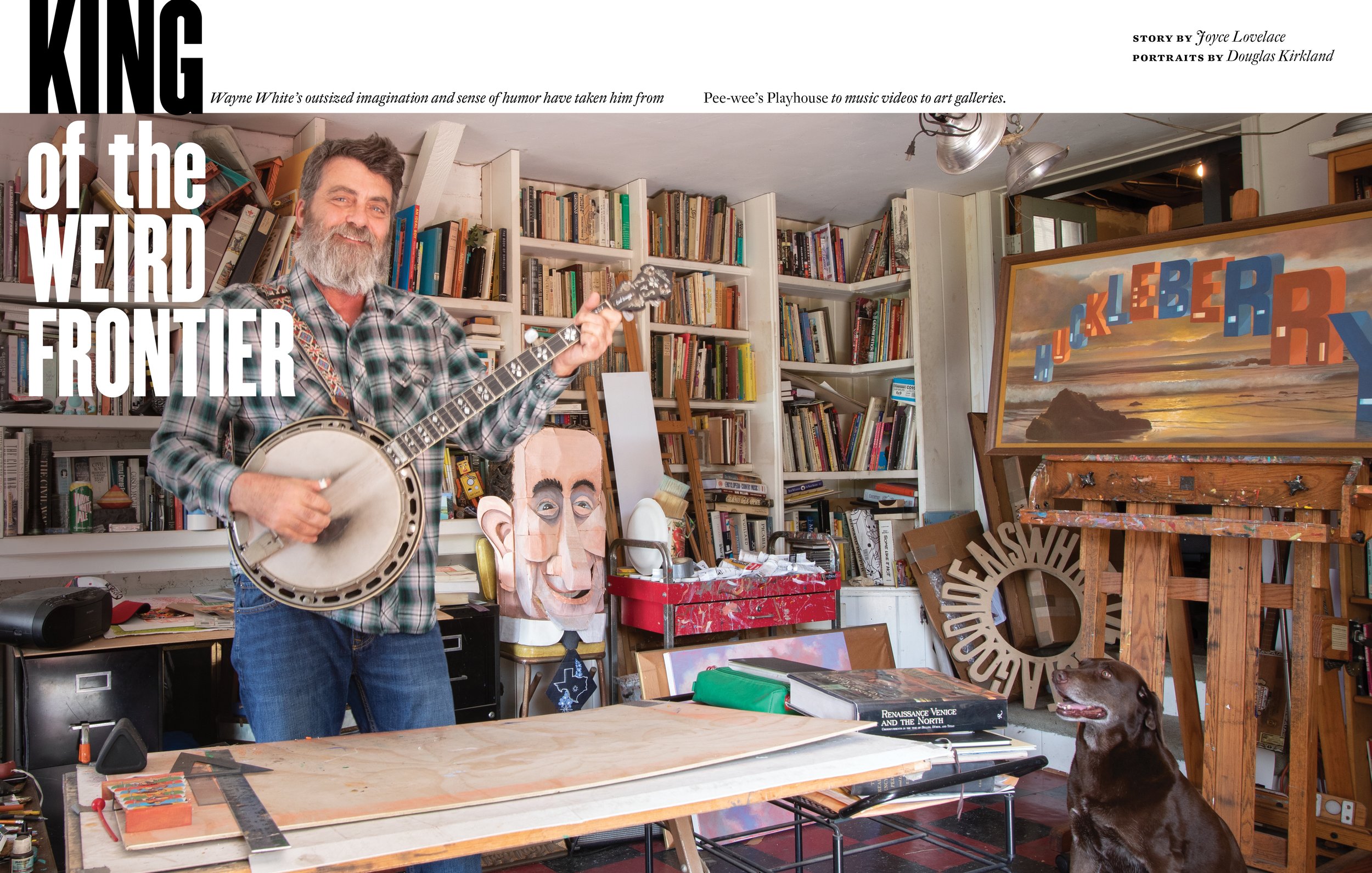
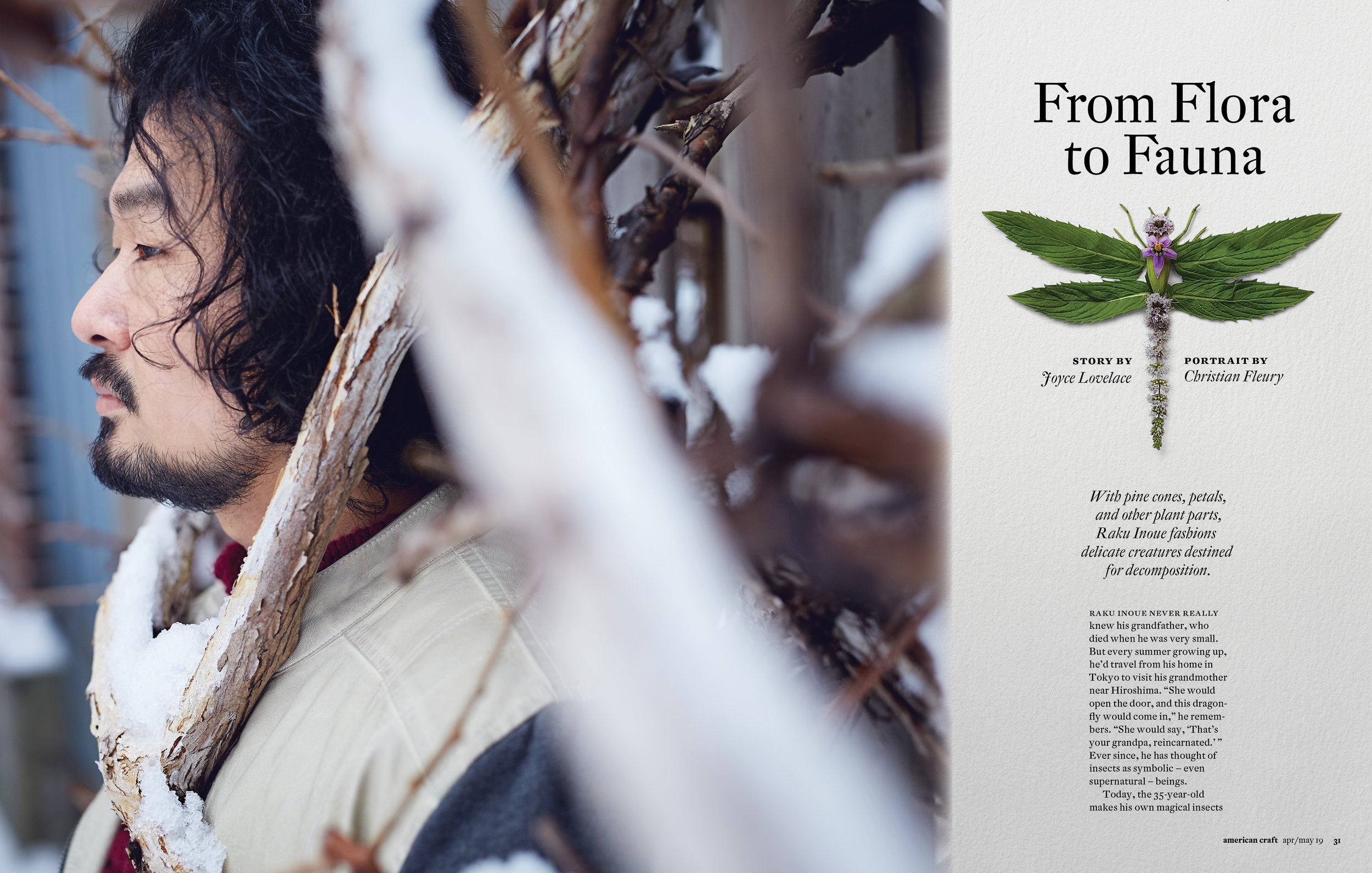
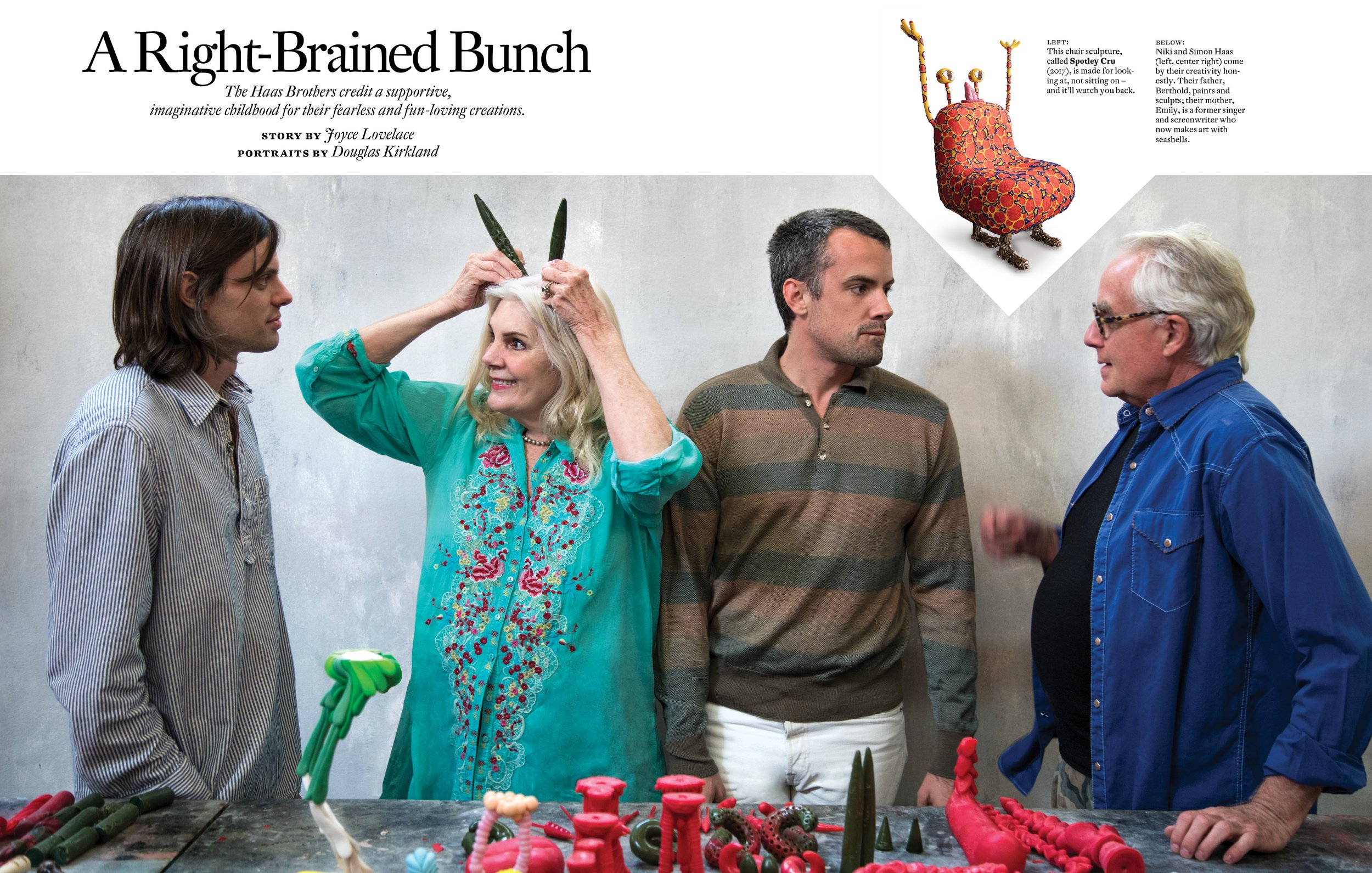
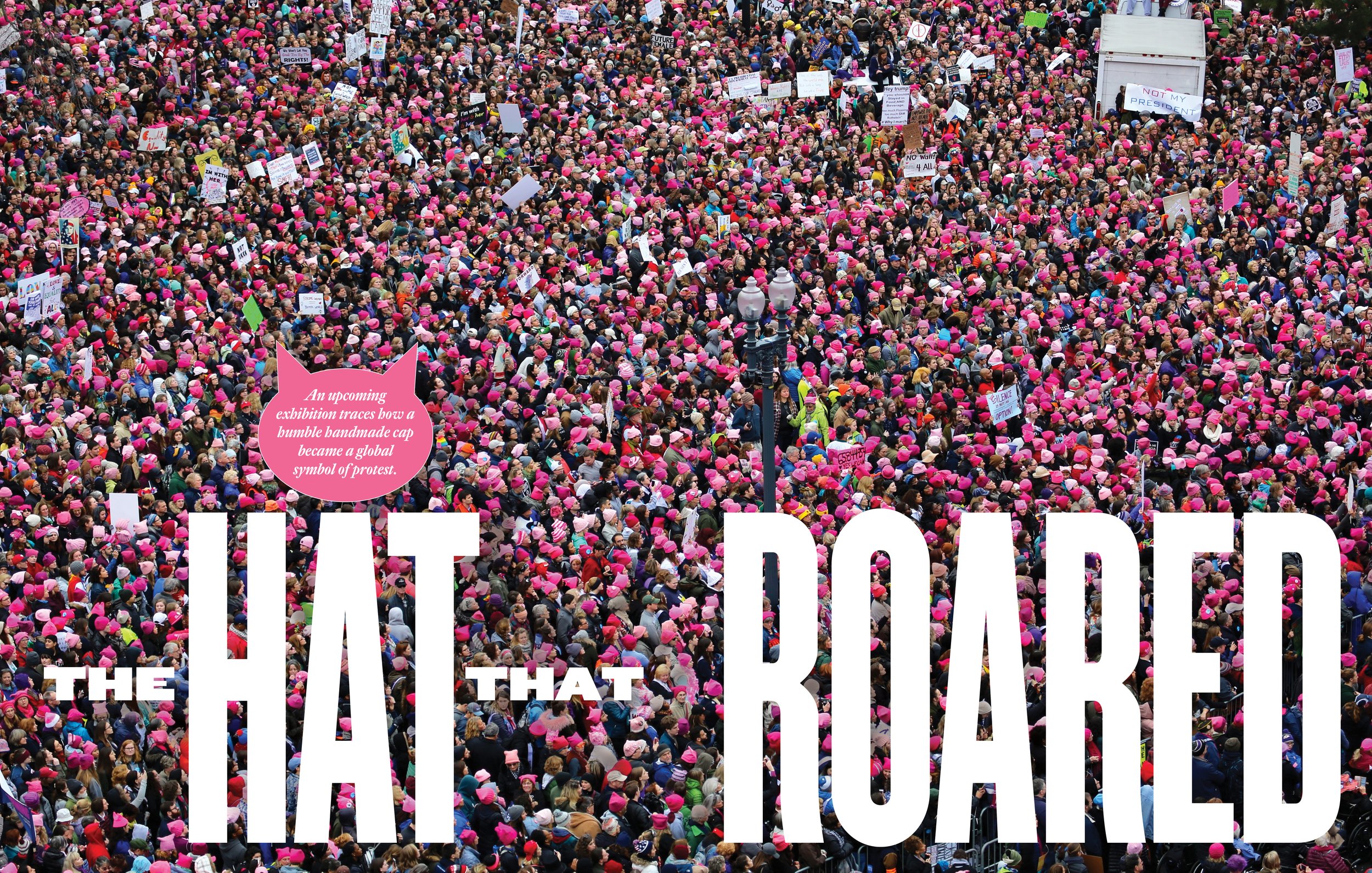
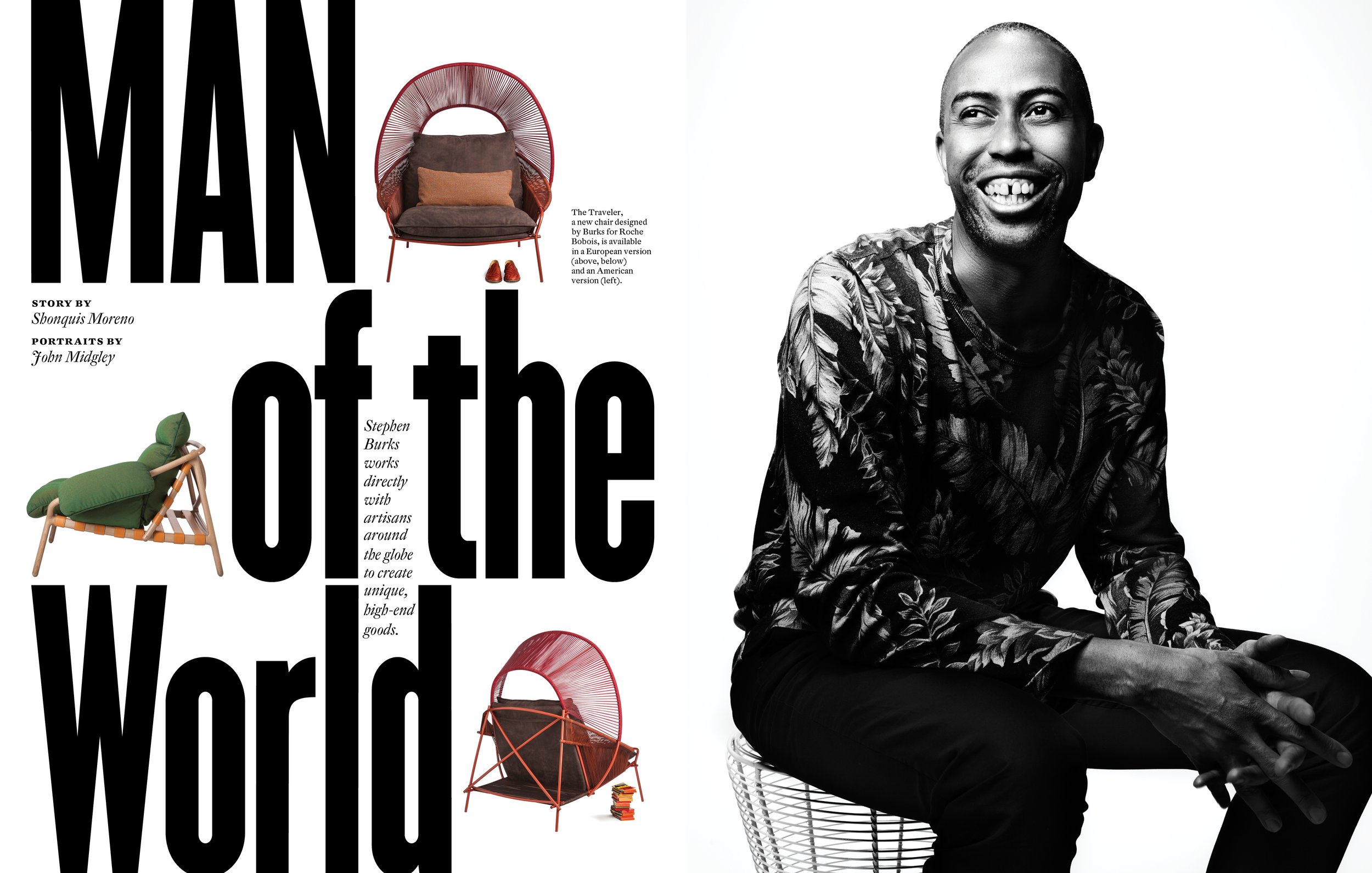
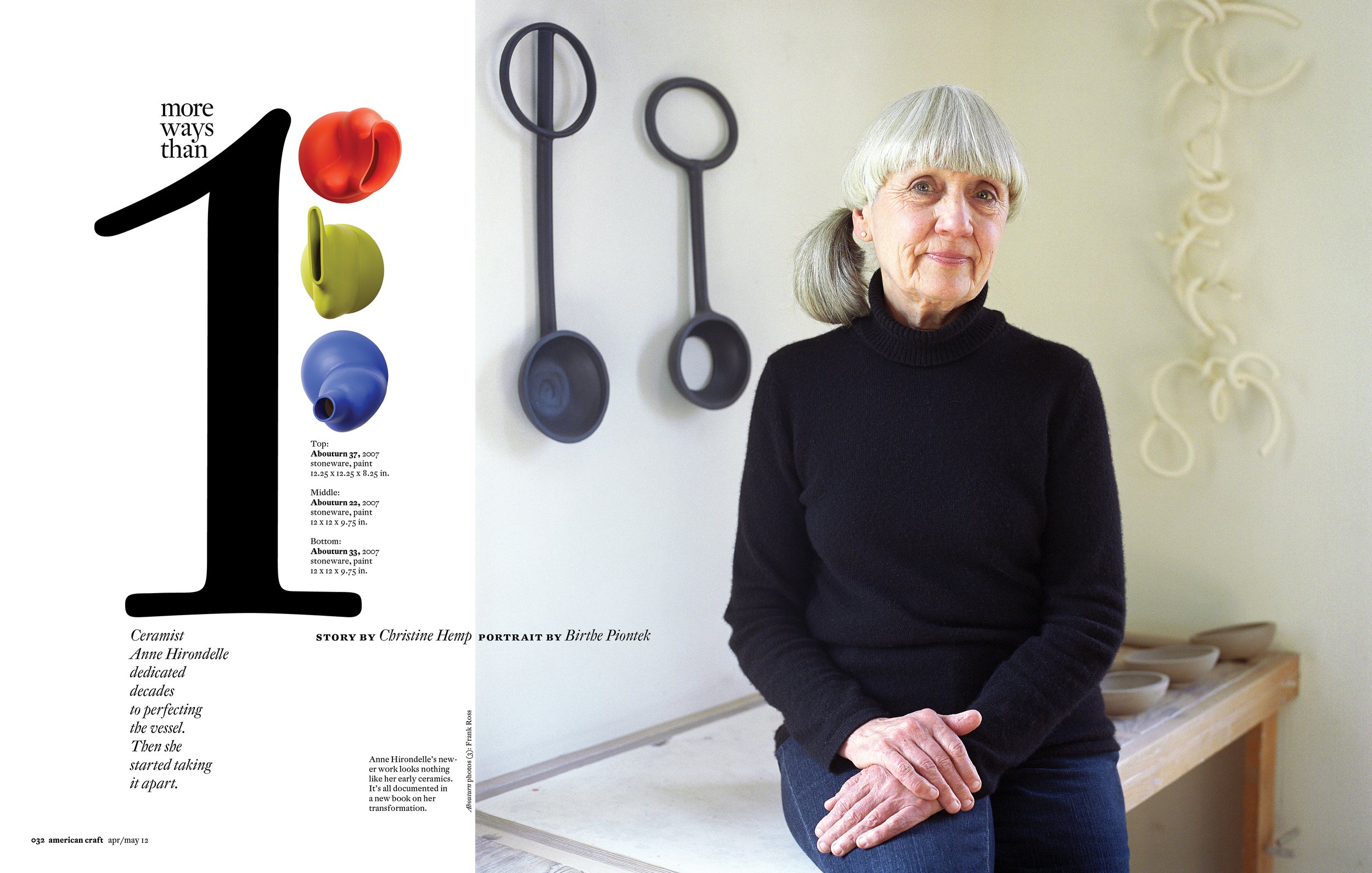
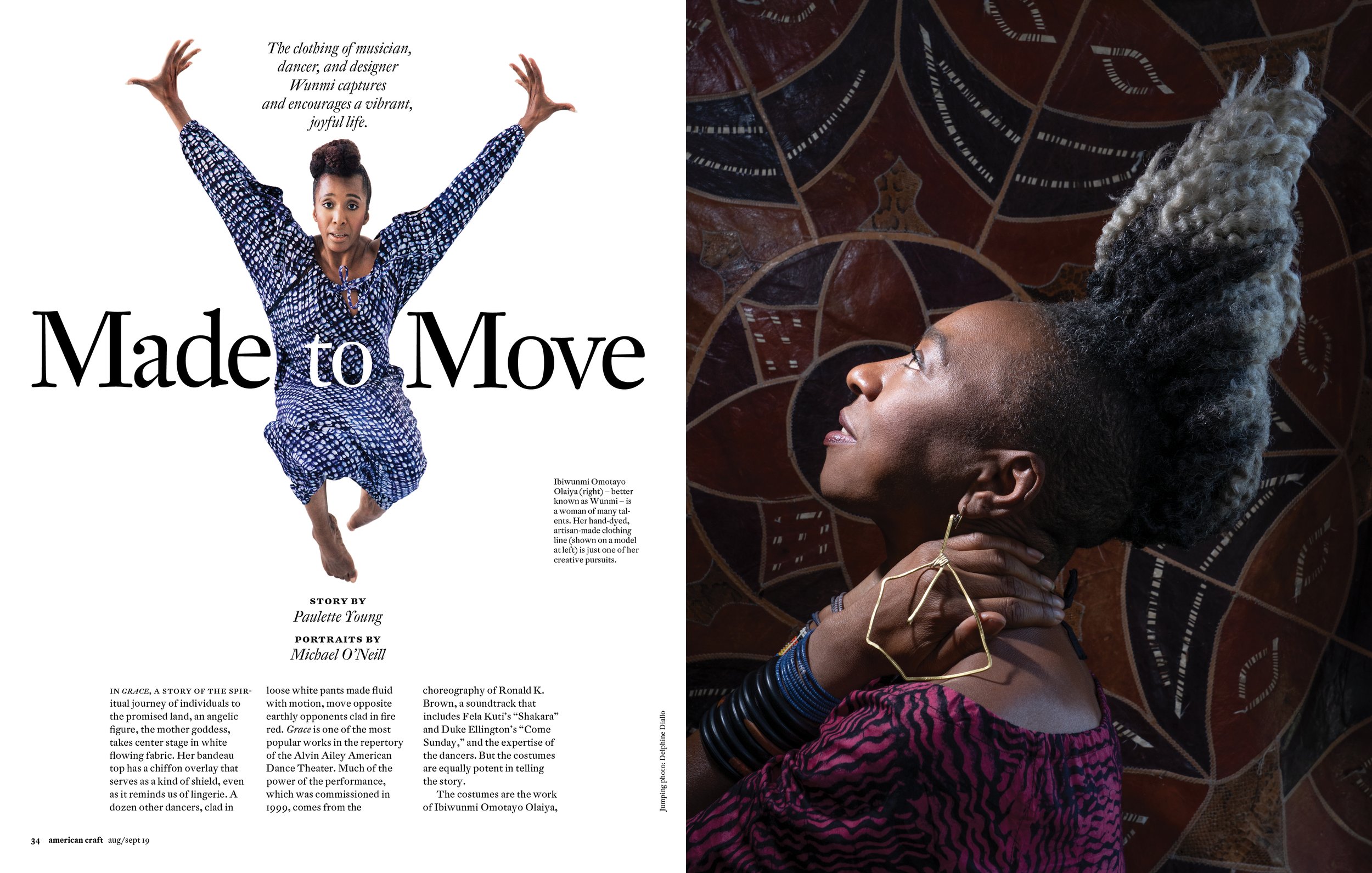
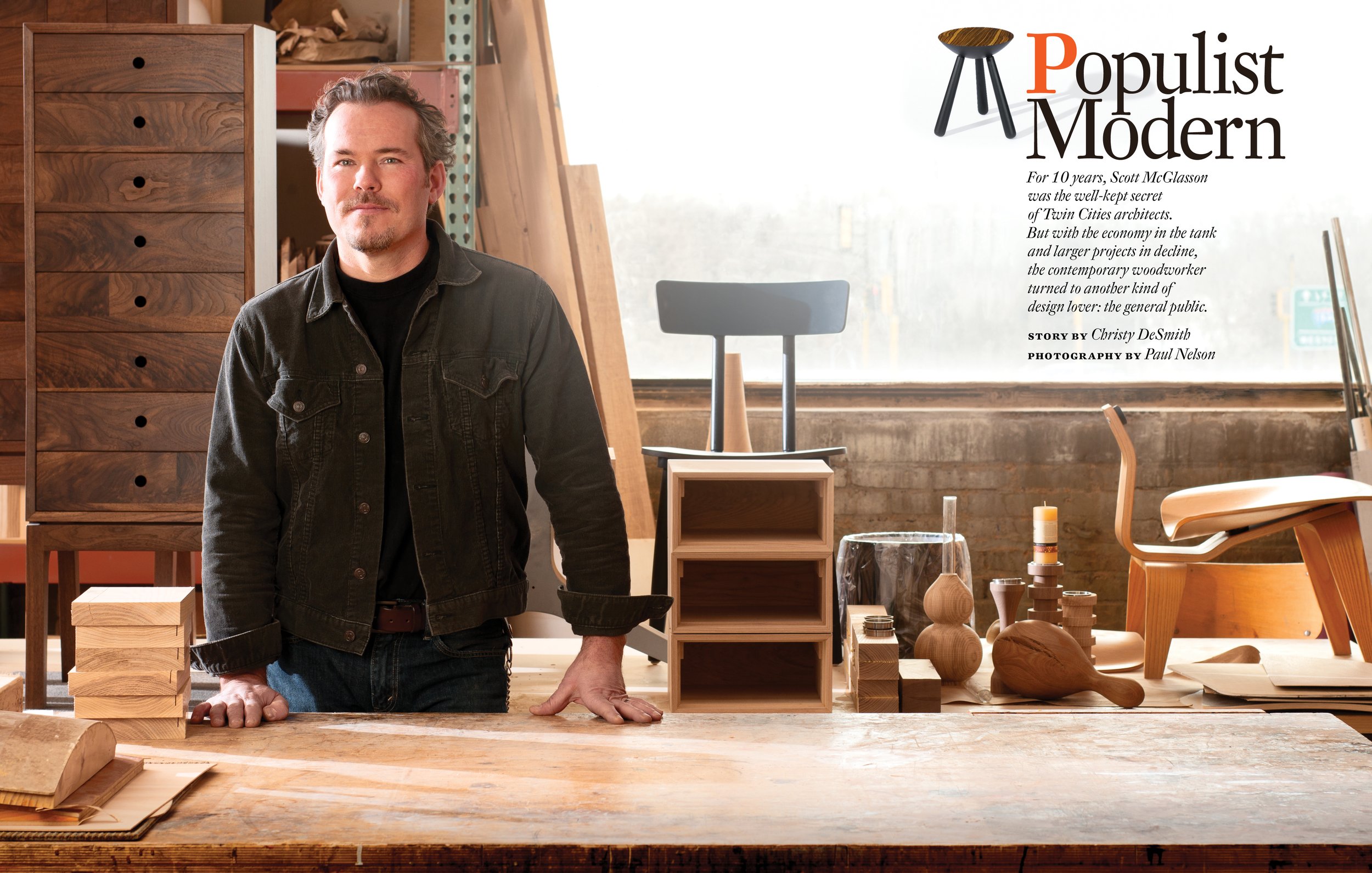
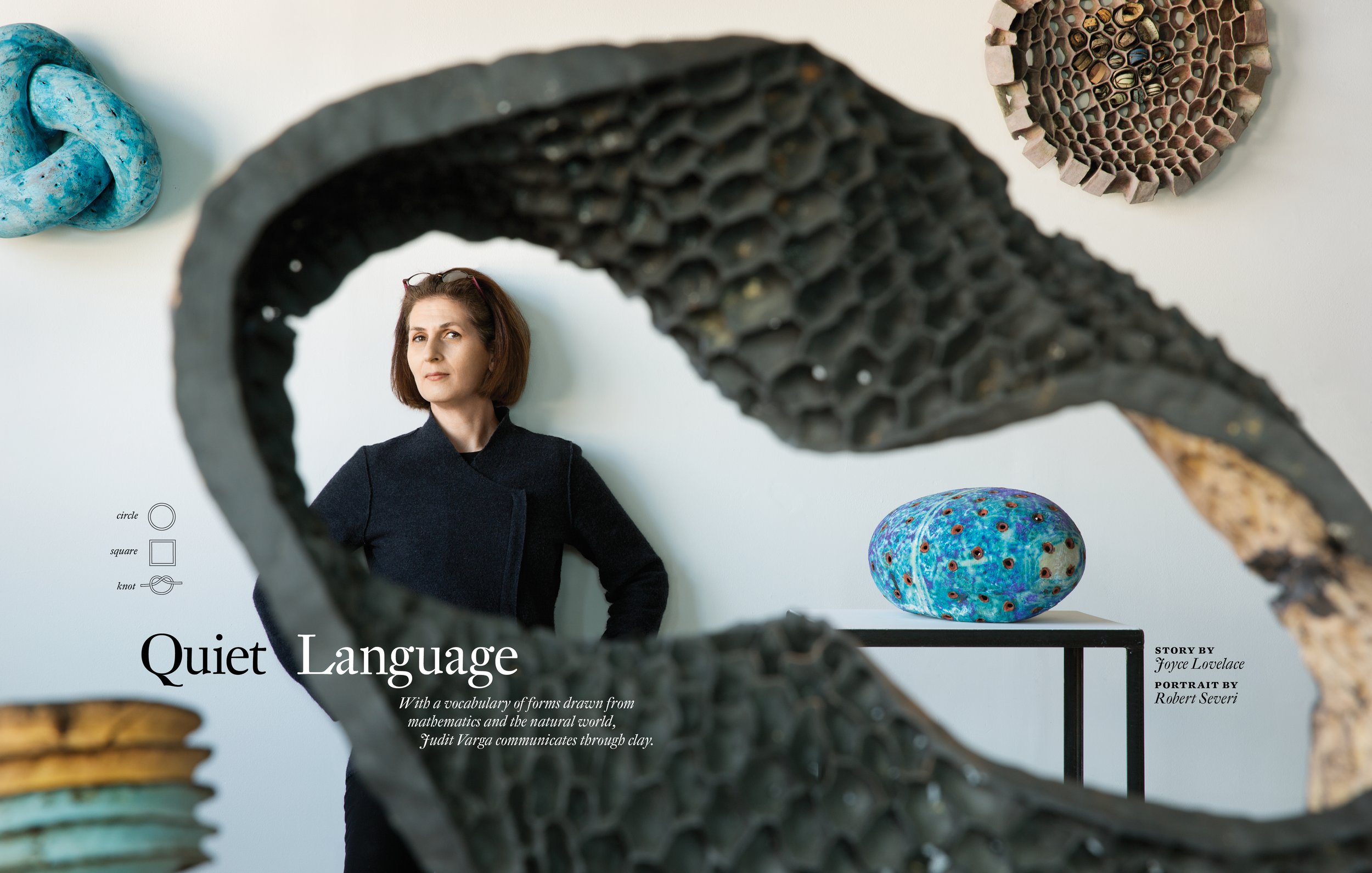

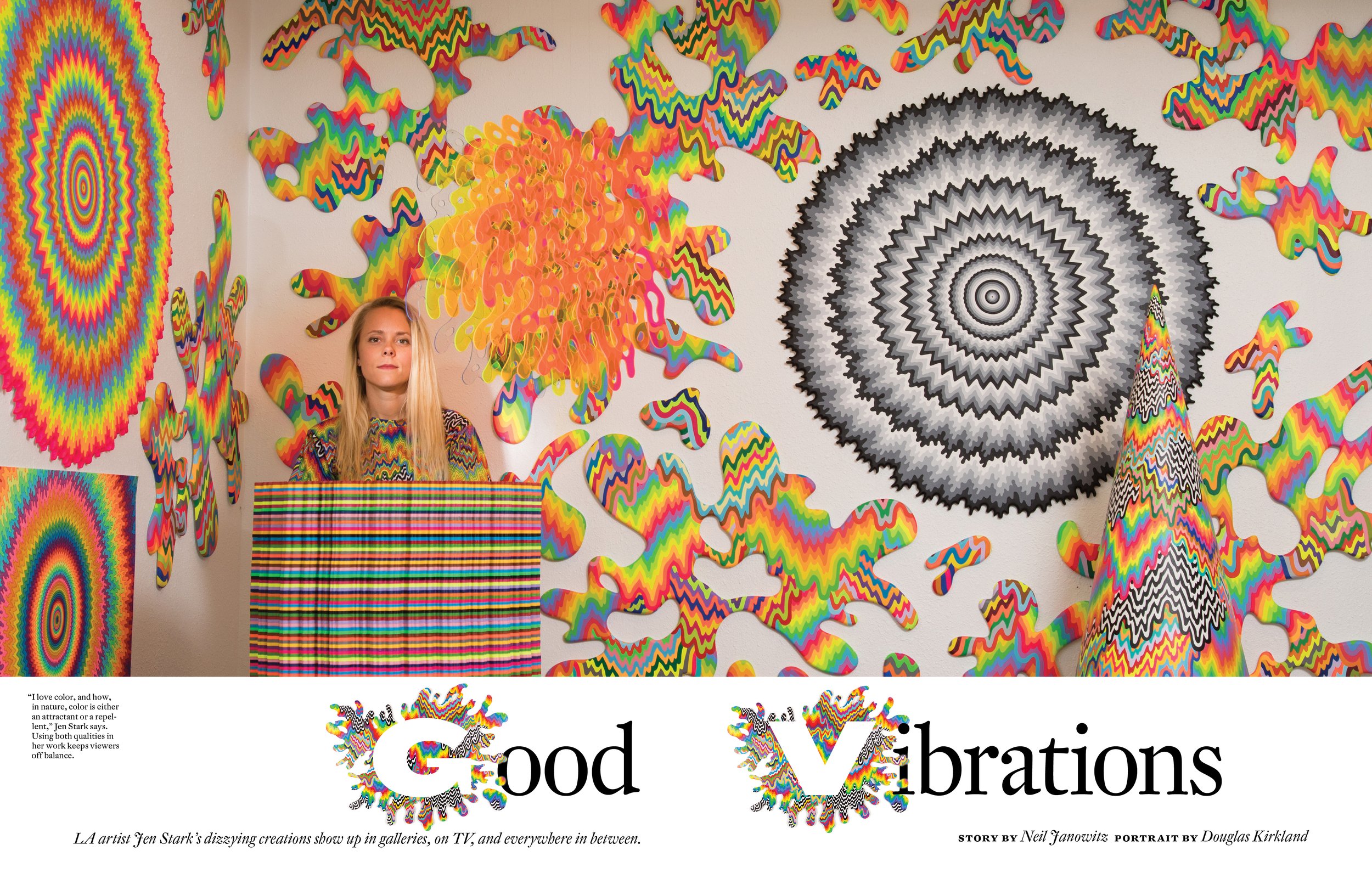
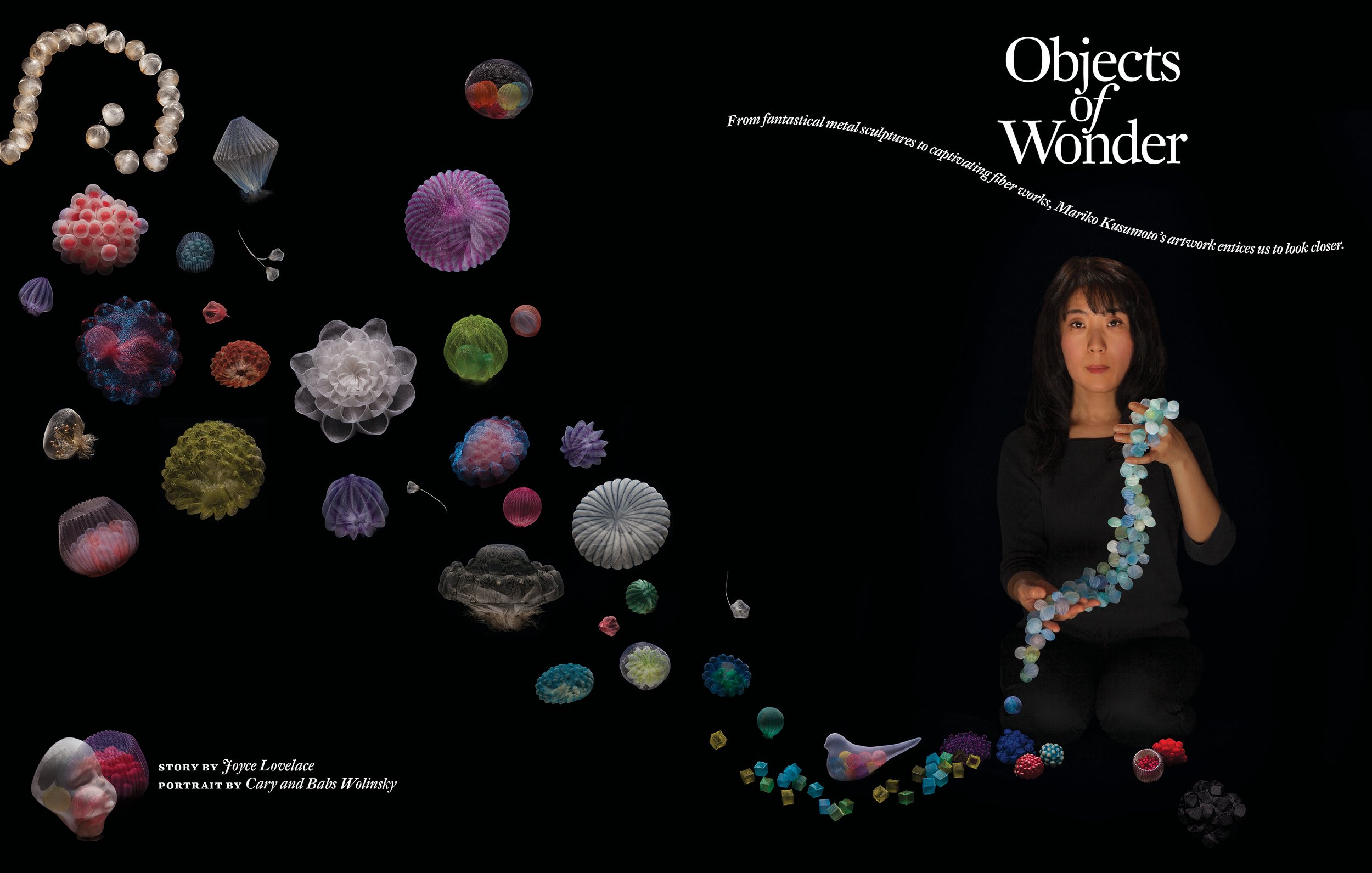
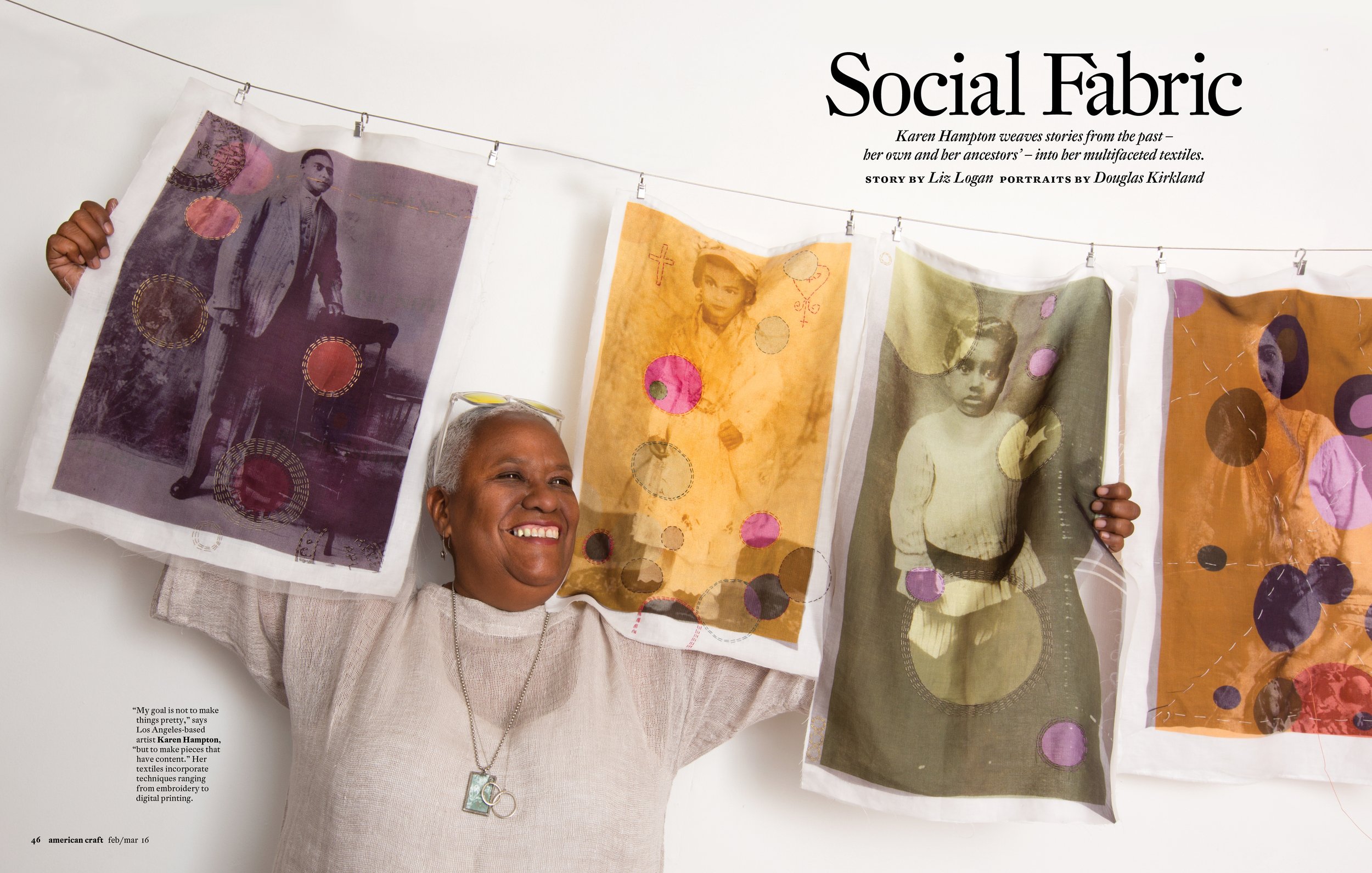
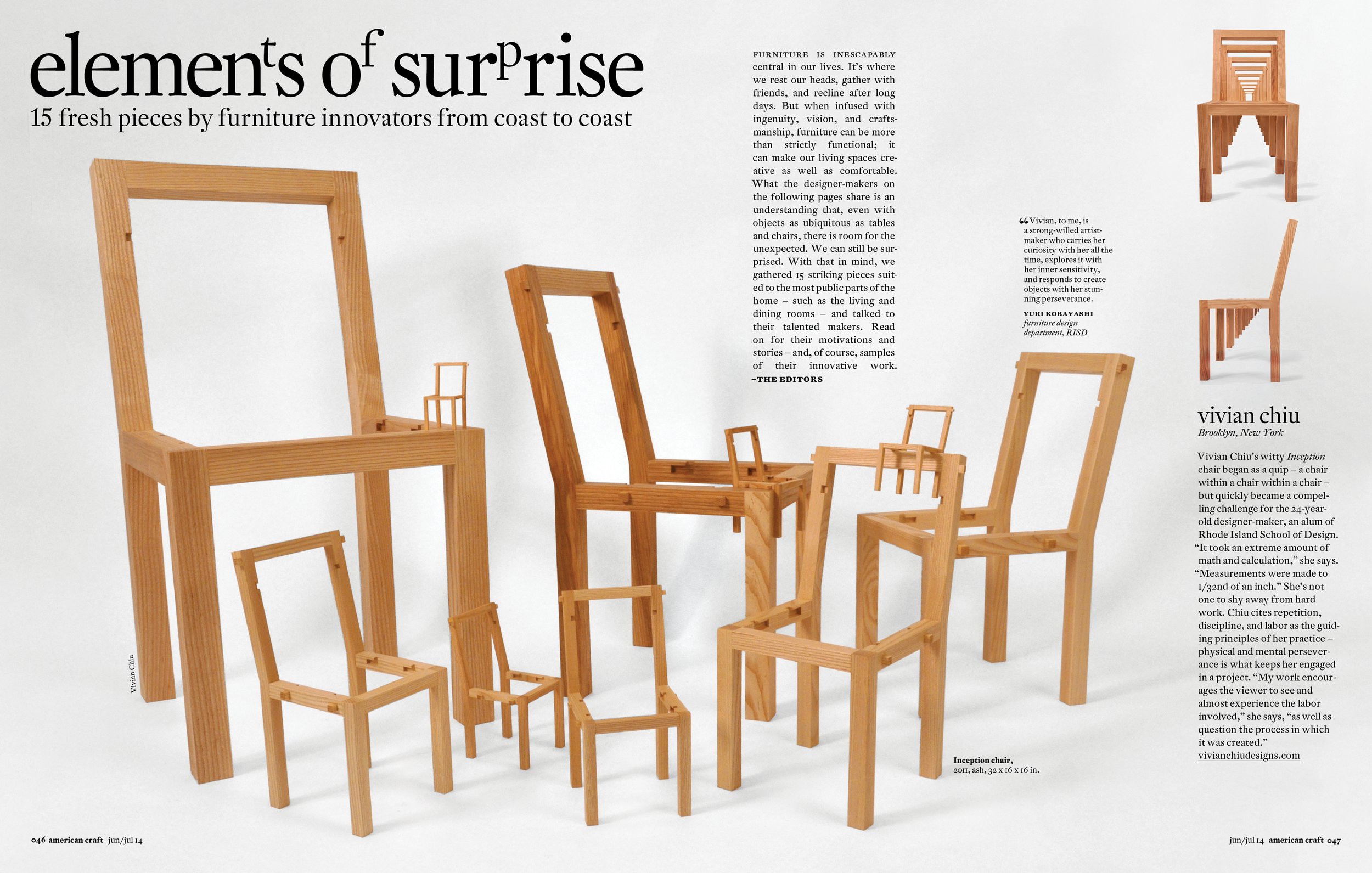
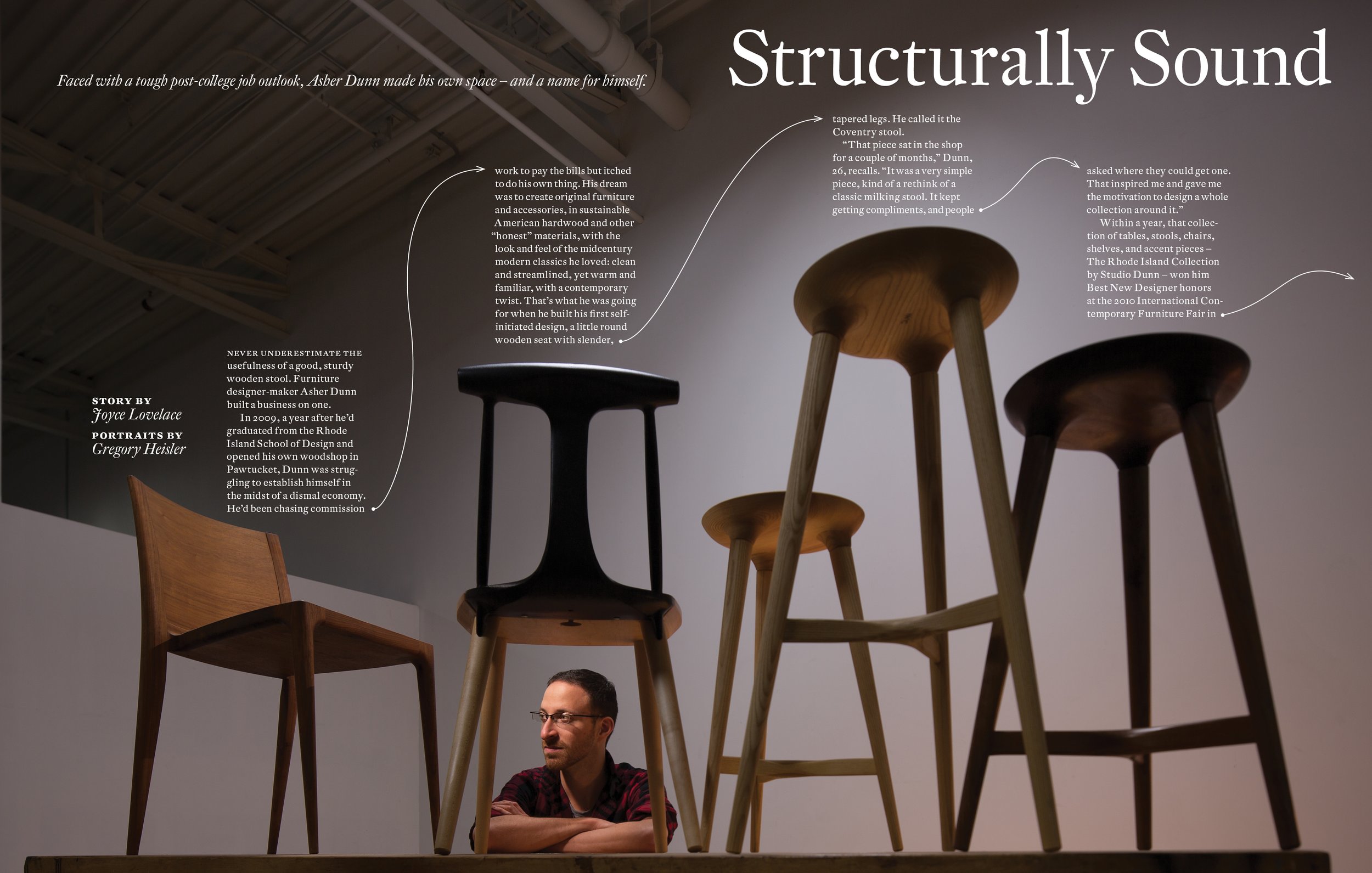
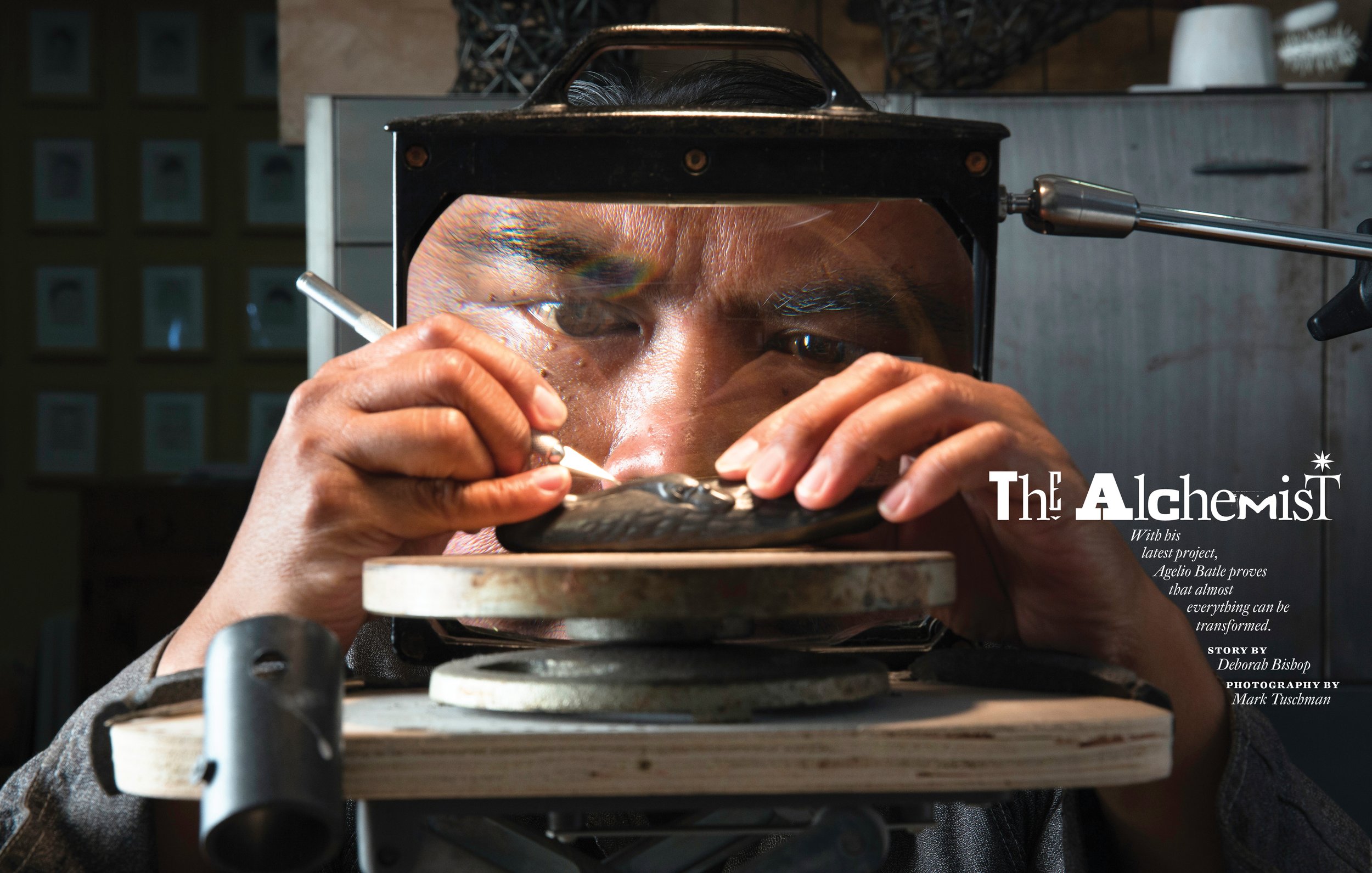
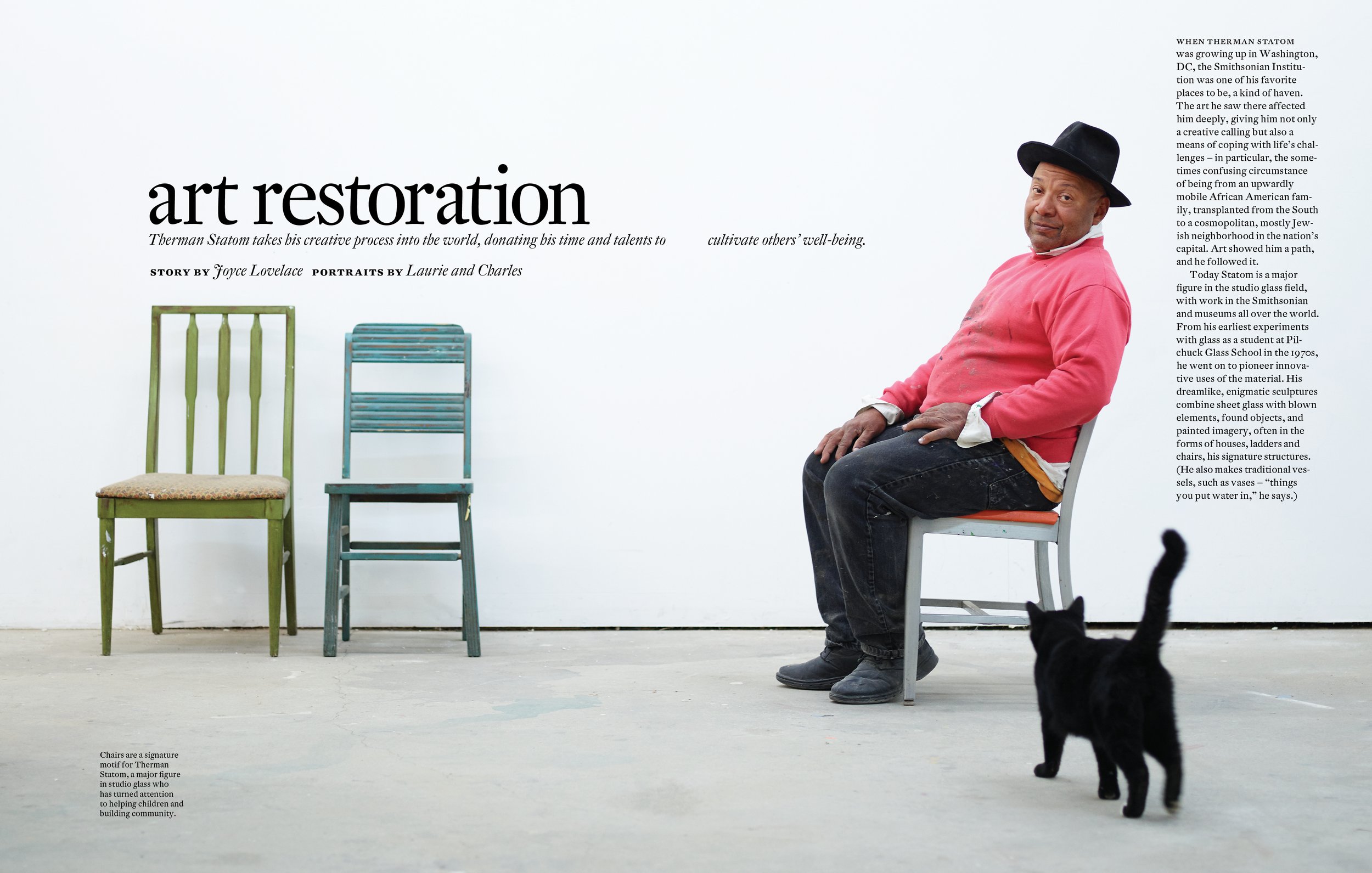

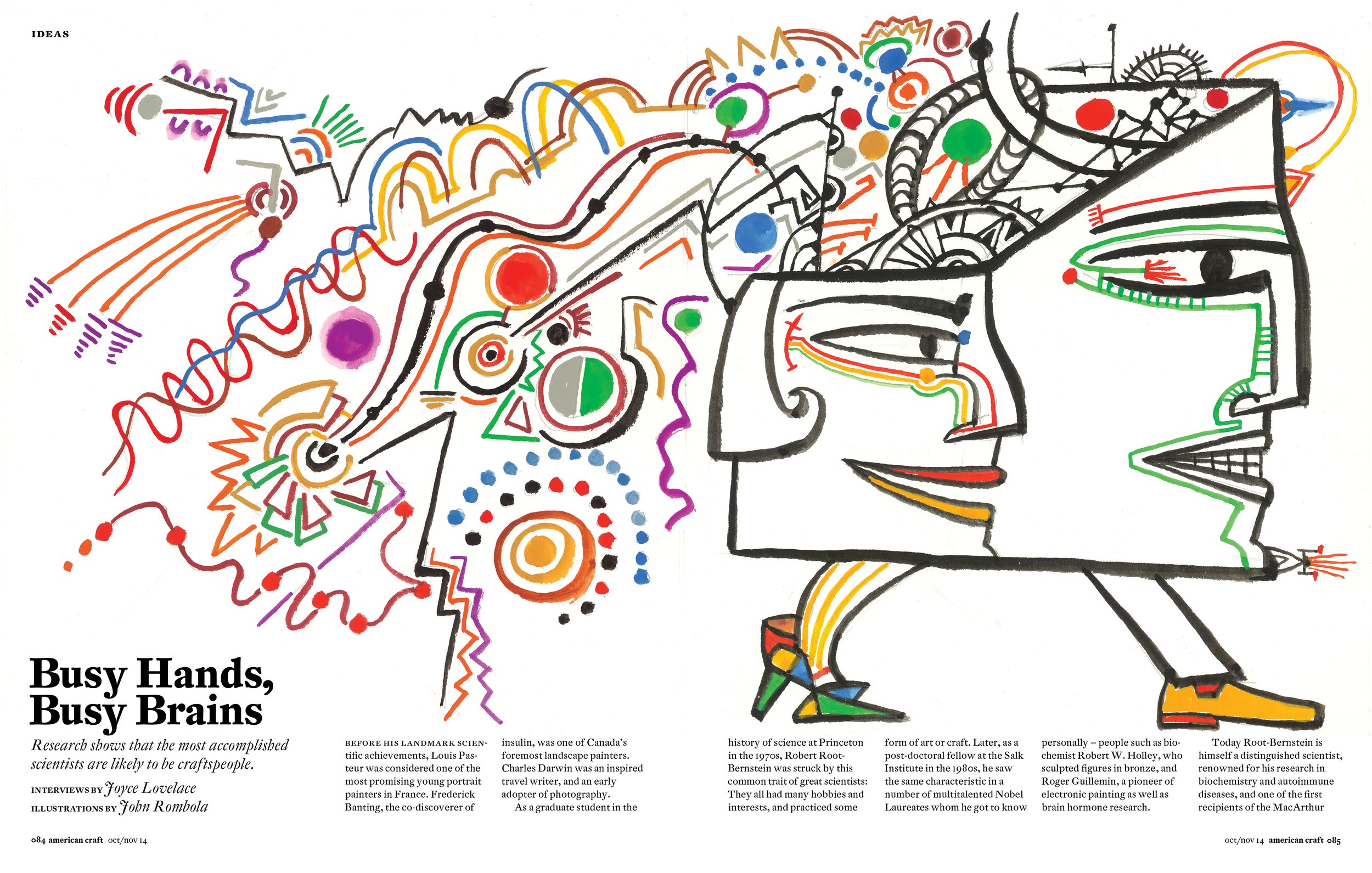

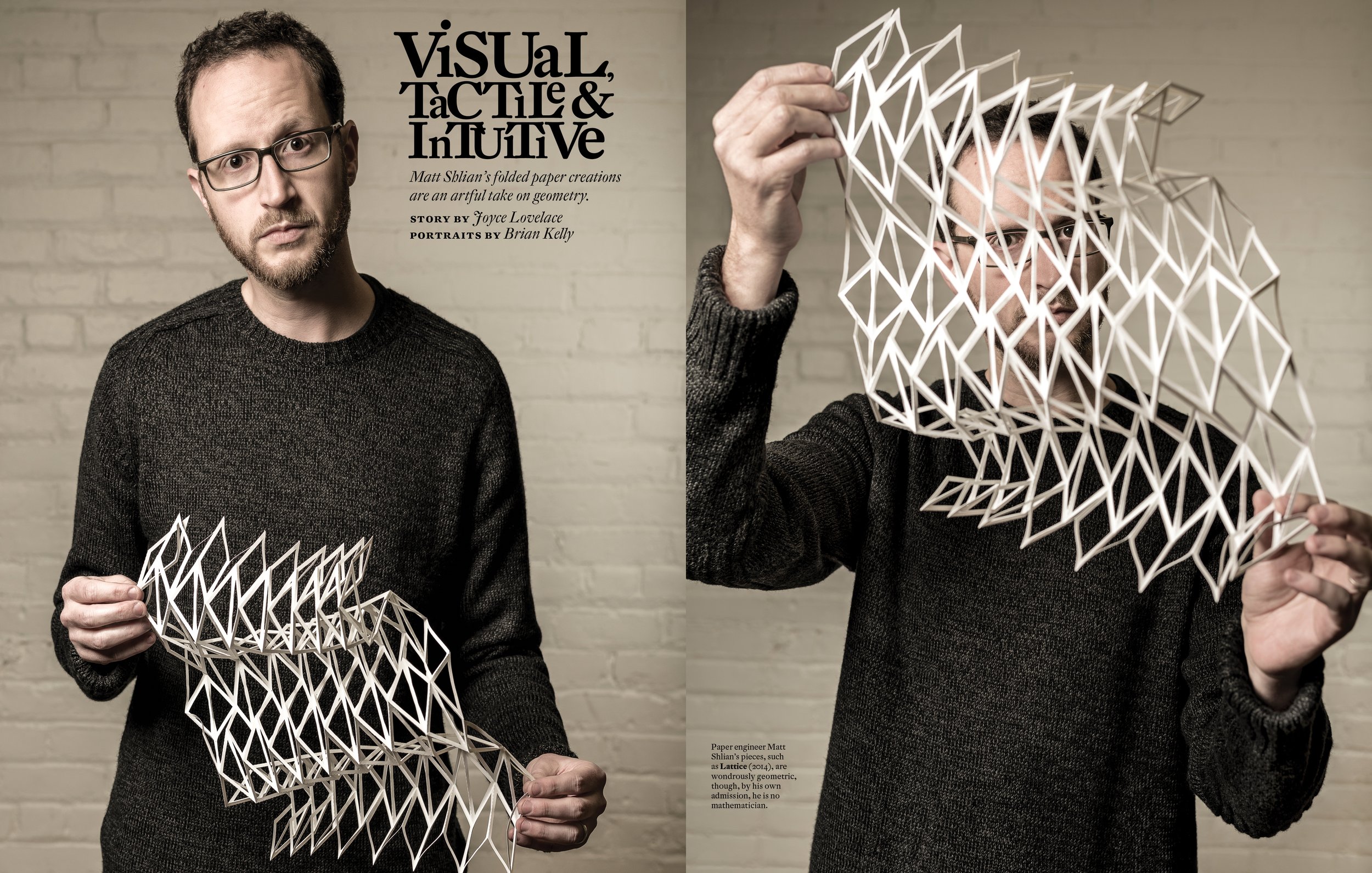
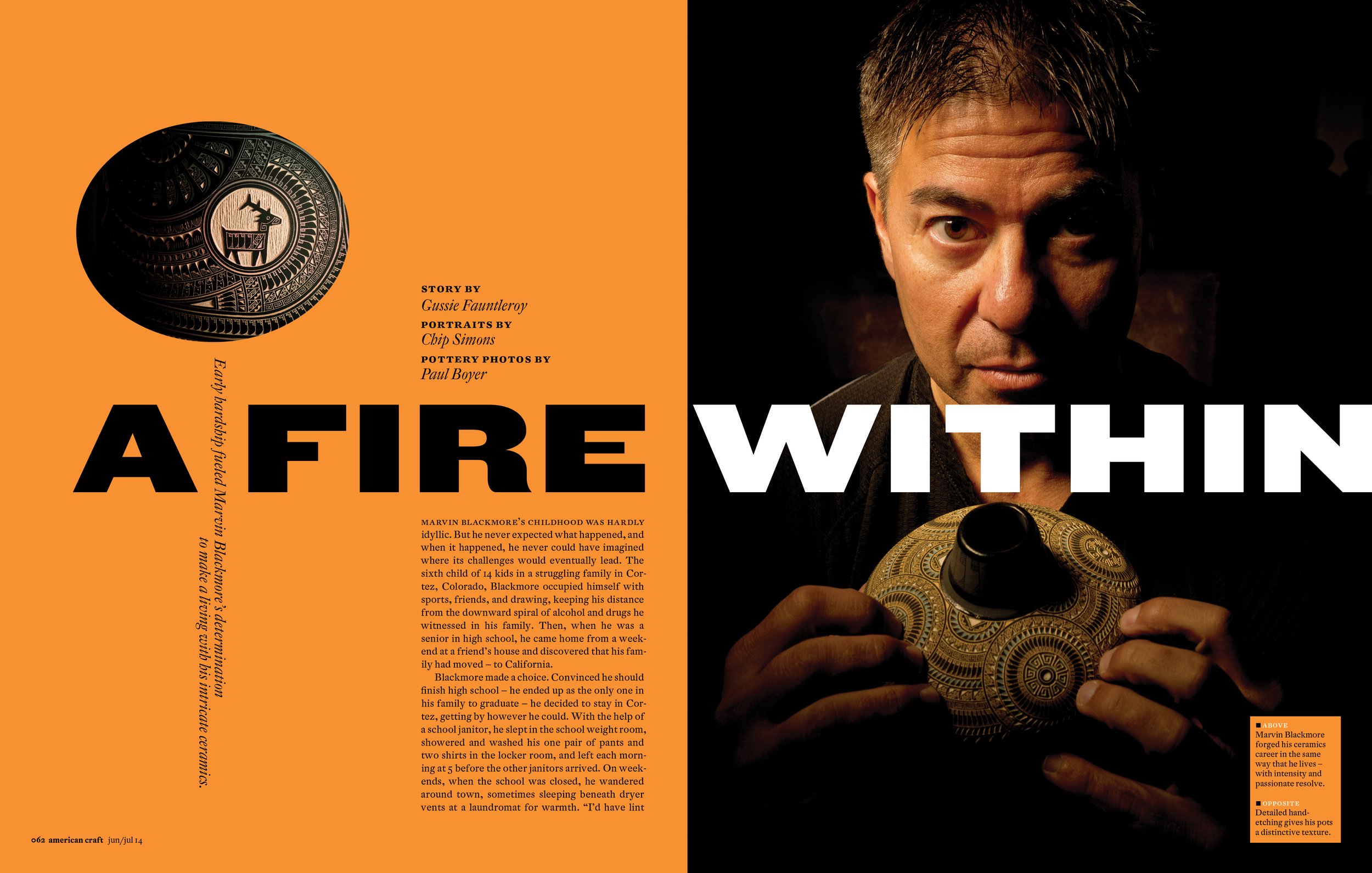
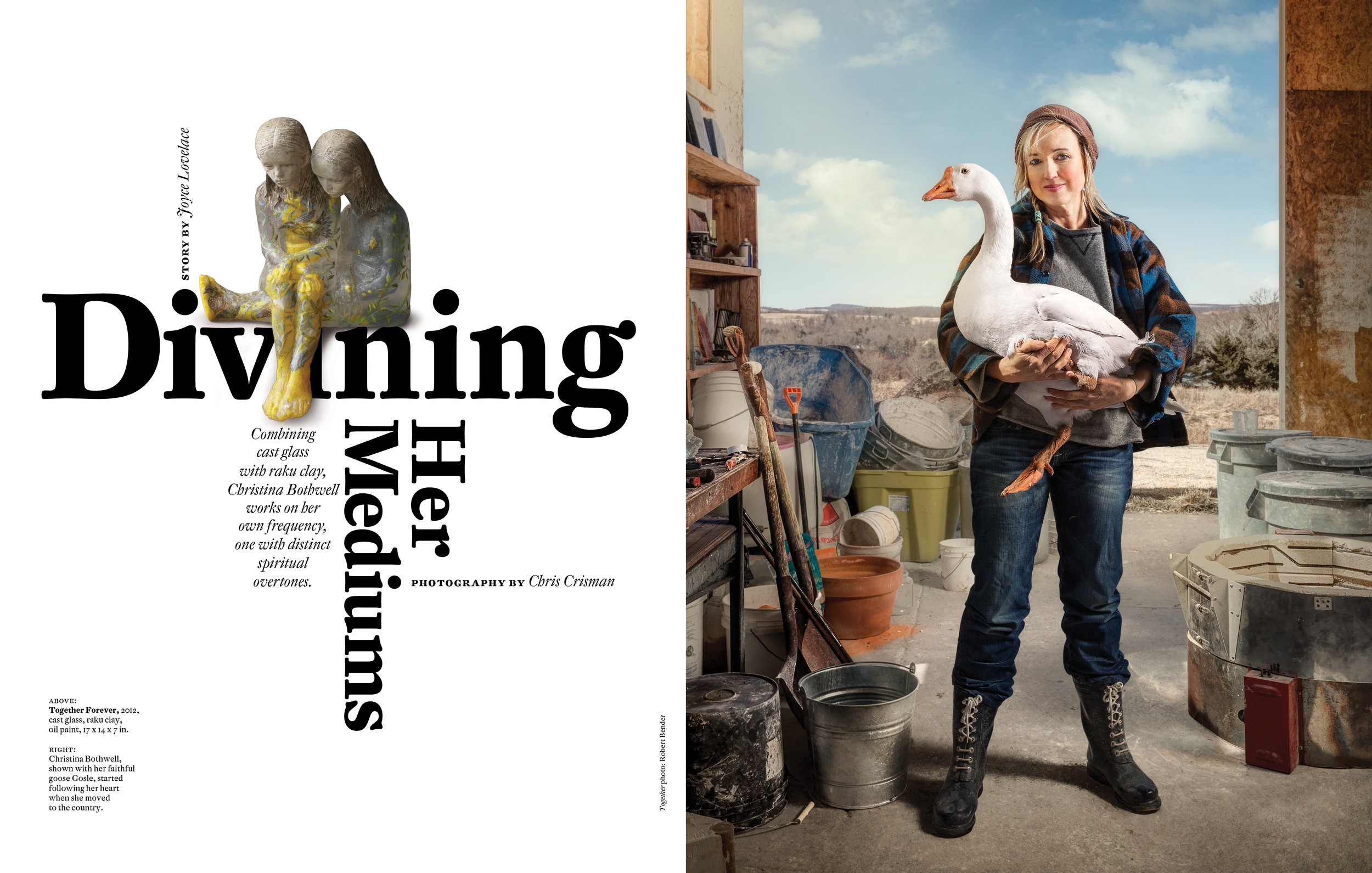
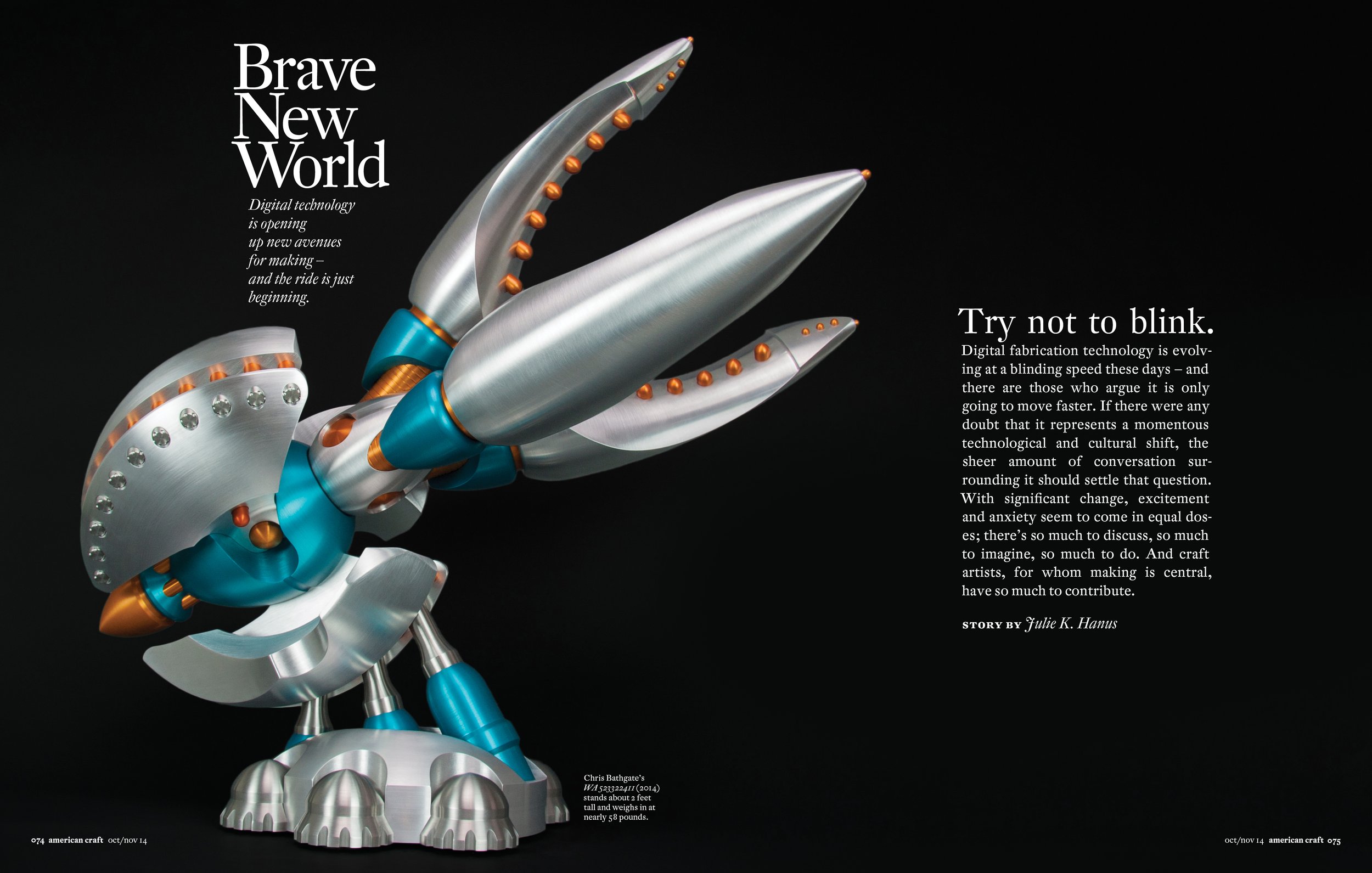
George Gendron: So I’m curious, when they described American Photographer to you, before there was anything to look at, how did they describe the magazine? What was the concept?
Mary K Baumann: You know at that point in time the photography magazines were all gear-oriented and this was much more focused on the image—the image, and the art of the image, and the philosophy of the image, and the concept of the image. It explored the act more of doing the photography from a mental state of mind versus just the equipment.
George Gendron: And just featured exquisite photography. The reason I asked was that some of us thought of this kind of as a reincarnation in a way of Look magazine, but about photography for photographers.
Mary K Baumann: I think that’s a pretty good description. The beauty of the magazine, I mean it was a real entrepreneurial effort. And it was started with very little money. My recollection is that Alan Bennett somehow got the money through Alan Patrikof and it was, like, $250,000, which is just unheard of. I don’t know how they did it, but he was turning that money over constantly.
Will Hopkins: Weekly!
Mary K Baumann: Alan Bennett was just brilliant at keeping it all together. But the other thing is, because it was a showcase, they didn’t have to pay for images. The photographers wanted to be in the publication. So you didn’t have that overhead of photography...
Will Hopkins: ...because we were doing stories about them.
George Gendron: It’s interesting though, when you talk about $250,000, I was trying to start my own magazine back then and it was a regional magazine, so I suppose you could argue that it shouldn’t have been quite as expensive as American Photographer, but the people warned me—including Alan Patrikof, who I pitched and had several conversations with about my concept—the problem with starting with too little capital was you would invest your time and energy and your capital and the premier issue and then you’d be out hustling for more money and the subsequent issues would suffer.
That is a miracle that you guys were launched on something like $250,000 and were able to sustain that level of excellence. That makes some sense to me because I was following both that and American Health at the same time.
Will Hopkins: ...Haha! T George [Harris]!
Mary K Baumann: We used to joke that Will could only do magazines with American in the title...
Hopkins in his studio at 14th Street and 5th Ave, in Manhattan. The American Health offices were downstairs. Photograph by Michael Robert Soluri
George Gendron: Well, you were doing that, but you were also doing redesigns of Forbes, Sports Afield, Architectural Digest. I think you did L’Express in France. Do you mind if I ask, I’m just really curious for all of the designers who were out there right now, what did you guys charge for redesign back then? Just ballpark.
Will Hopkins: Oh, well, I don’t know. It wasn’t a lot.
George Gendron: Well, it’s, it still isn’t a lot. [Laughs]
Will Hopkins: I mean, it wasn’t. I don’t have any idea of what it was. But they took me to France and dined me and wined me and took me to the South [of France] and all that kind of thing. And I had a great time. I don’t know how much I made from that.
George Gendron: Yeah, that’s the French. I was trying to acquire—this is after that time period, but when I was running Inc.—a magazine called L’Entreprise, which was Inc. in France, and the same thing—they wined and dined me. I couldn’t believe it. And they would take you sailing and they would, they reminded me of the Japanese. It was kind of like, “Well, we have to get to know you before we can even consider doing business with you.” And then at the end they refused to sell it to me.
But I look back, that is one of the most enjoyable courtships I ever had professionally. So here you are, you are the quintessential New York designer, and then you leave.
Will Hopkins: Mm-hmm.
George Gendron: You leave New York and you go to Minneapolis. Did your bride, or future bride, have anything to do with that?
Mary K Baumann: We were married at that time and we were partners in our firm, Hopkins/Baumann. And we were doing, on a regular basis, a children’s magazine called Kids Discover. And we were trying to do a number of book projects. This was after 9/11. And I’m originally from Minnesota. And we said, “You know, we’ve got to think about getting out of New York. It’s getting too expensive and we can really work anywhere. So we found this great loft on the Mississippi River, on the northside of Minneapolis, and bought it and moved out here and have not regretted it since.
George Gendron: Is that the place that Patrick and I saw when we were out there with you?
Mary K Baumann: Yeah.
George Gendron: That place was spectacular.
Will Hopkins: Yeah. We love it.
Mary K Baumann: So we can live and work here—and hopefully die here. And, I mean, the interesting thing about being—and you probably not being in New York—when we were in New York, all of our friends were in publishing in some way, shape, or form.
Here our friends are architects, doctors, teachers, photographers, and other people too. But it’s a much more, I guess, realistic way of living. It’s not so much focused on just one industry.
George Gendron: Yeah, I understand that. Well, even here in Boston, I have to say, it can lead to a kind of professional “bubble” that you’re in, in terms of, you know, your friends are other editors and designers, illustrators, photographers, and so on. And, I don’t know, I have to say, selfishly, I’ve always found those people to be extraordinarily interesting to hang around with.
But I’m curious when you guys, well, I guess since you announced to your friends and colleagues that you were leaving, and this is post-9/11, that probably didn’t come as quite the shock because there were a lot of people who were thinking about whether they wanted to stay in New York at that point.
Mary K Baumann: We thought that people would say, “Are you out of your mind?” But they didn’t. They said, “Minneapolis? Oh, that’s a good idea.” Coincidentally, we were living in a building on the west side called The Apthorp which is one of the great west side buildings. And it had been sold and they were going to turn it into condominiums.
And we were in a rent-stabilized apartment and, I think, paying $1,700 a month for 2000 square feet. And they were going to sell our apartment for $4.5 million. We said, “They’re gonna try and get us the hell out of here.” So that was another motivating factor to move.
George Gendron: So we’ve talked about a small town in Arkansas, we’ve talked about Munich, we’ve talked about New York, Chicago, Minneapolis. I’m curious whether either or both of you feel that location kind of has an impact on people who are creating print products.
Will Hopkins: Oh, I think it does.
Mary K Baumann: I don’t know so much anymore. I mean, it certainly has expanded. I don’t think it’s as New York-centric as it used to be. However, I mean certainly the talent in New York is... oh, I don’t even know if that’s true anymore.
We did this magazine called American Craft, which was a bimonthly. And we had people working all over the place. We had great photographers in every city that we needed. So I think you can really do it. I don’t know if there’s the business acumen outside of New York for publications.
Books & Miscellaneous Works
George Gendron: No, that’s interesting. I hadn’t thought about it quite from that perspective. We were talking recently with Dorothy Kalins about Metropolitan Home, and she was talking about how interesting it is to take a look at a magazine like Inc., that was very much influenced by its founder, Bernie Goldhirsh, who was a graduate of MIT and was really enamored of innovation and entrepreneurship. And Fast Company was very influenced by the fact that its founders had worked at the Harvard Business Review. Wired, out in San Francisco, impacted obviously by the fact that you had the birth of the PC out there and kind of the concentration of technologists.
And so I’m not sure you could have launched Inc., or Wired, or Fast Company in New York given the unbelievable influence of Wall Street. It’s just something we think about sometimes. It’s that connection between where you are and where you work and the publication that you...
Mary K Baumann: I do think that the East Coast does dominate the news cycle.
George Gendron: Yeah. That’s interesting. Will, I’m curious, going all the way back to where we started this conversation in a small town in Arkansas, did that play a role in your career in any way? Was that an advantage for you? And I asked that because we were talking to Kurt Anderson about Spy magazine and Kurt made the comment, you know, it’s ironic when you think about Spy and how urbane a magazine it was in many respects. Kurt comes from Nebraska and Graydon Carter comes from Canada. And so we got into a conversation about how their naïvete about New York was actually a source of competitive advantage. They weren’t part of that crowd. They didn’t want to be a part of that crowd.
Will Hopkins: Yeah. I could see that.
Mary K Baumann: Knowing Will, and being from Minnesota, when I moved to New York, I felt it was an advantage not being from New York, because I was humbler. I wasn’t as arrogant. I was curious. And I think Will has that same quality. People liked you.
George Gendron: You’re pointing out something that’s true, which is, if you grew up in New York or around New York, a lack of humility and arrogance were considered to be sources of competitive advantage.
Will Hopkins: Right? Exactly. Exactly. Yeah.
Mary K Baumann: You know, people would always tell us that we were approachable. We would see people and we were kind to people and we were good with our employees and all those sorts of things. Which, I think, maybe not coming from New York, it was definitely true in both of our cases.
George Gendron: Yeah, I can see that. The first time I ever actually met you face to face was when Patrick and I were out doing a presentation for your event, and you know, by the time we got on the plane to come back, I felt like I had known you my whole life. As I do now!
Mary K Baumann: Right. Exactly!
Will Hopkins and his partner in life and work, Mary K Baumann, continue to do client work from their loft overlooking the Mississippi River in downtown Minneapolis. For more information, visit their website.
Back to the Interviews
A Little Romance
A conversation with photo editor and author Kathy Ryan (The New York Times Magazine, Office Romance).
A conversation with photo editor and author Kathy Ryan (The New York Times Magazine, Office Romance).
—
THIS EPISODE IS MADE POSSIBLE WITH THE SUPPORT OF ISSUES MAGAZINE SHOP
Photograph by Philip Montgomery
Kathy Ryan’s career journey began in Bound Brook, New Jersey, at St Joseph’s Catholic School. Her third grade teacher, Sister Mary William, had a thing for great works of art. And, as it turns out, so did Ryan.
“I got it. I so got it. Looking at the pictures and just understanding. It was like, ‘Wow, I get it.’”
That understanding of the power of the visual led Ryan to a focus on art in college—on lithography and printmaking. But the solemn life of an artist wasn’t for her. She hated being alone all day. She loved working with people. She wanted to be part of a team.
Kathy Ryan was made for magazines.
After starting her career at Sygma, the renowned French photo agency, Ryan was hired away by The New York Times Magazine in 1985. She had found her team.
In her tenure at the Times, she has collaborated with all the bold-face names: Jake Silverstein and Gail Bichler (the current editor-in-chief and creative director) as well as Adam Moss, Rem Duplessis, Janet Froelich, Peter Howe, Diana Laguardia, Gerald Marzorati, Ken Kendrick, and Jack Rosenthal. And between and among them they’ve won all the awards—and created one of the world’s truly great magazines.
Recently, Ryan’s work at the Times took a new turn. Inspired by her collaborations with the most gifted photographers in the business, Ryan started making a few pictures of her own.
She had always been mesmerized by the way the light hit the Renzo Piano-designed Times headquarters. But on this particularly sunny morning, Ryan pulled out her phone and snapped a picture. Then she took another. And another. She started seeing pictures everywhere. Portraits, abstracts—whatever caught her eye. Encouraged by friends and colleagues, she posted them on Instagram with the hashtag #officeromance.
After a career of looking at pictures, she is now making them. And that led to her glorious book, Office Romance, published by Aperture in 2014.
We talked to Ryan about her passion for the art of work, about the thrill of discovering incredible talent in unexpected places, and about the responsibility that comes with sending photojournalists into harm’s way.
A collection of Ryan’s favorite covers spanning her 38-year career at The New York Times Magazine.
“When I started out, you turned to magazines and papers and books for the photos. That was it. And now it’s just completely different. People see hundreds and hundreds of pictures every day. So where is our place in that?”
The New York Times Magazine braintrust (from left): editor Jake Silverstein, creative director Gail Bichler, and Ryan. (Photograph by David La Spina/Esto)
George Gendron: I’m going to dive right in here with a question that I shared with you before, and that is that the vast majority of people involved in, certainly in print media, never really understand or understood what a photo editor really does. And I think people really don’t understand, especially in this day and age, what the job really entails. And so I’m wondering if you were standing up in front of, let’s say, a class of young, would-be photojournalists and videographers, how would you answer the question, What does the director of photography for The New York Times Magazine—what do you do?
Kathy Ryan: Well, I work with a team of photo editors. We’re a small team and the job is basically to conceptualize and figure out the photographic approach for each of the stories coming up. So we do, you know, coming up with ideas and assigning photography to accompany text-driven pieces. And that’s the majority of what we do at The New York Times Magazine.
But we also initiate ideas for photo essays, where it comes from either a photo editor or a photographer, and we pitch those ideas in the same way a story editor would. So the photo editor’s job is basically—the director of photography, my job—is to work with a team, look at the stories that are coming up, and as fast as they’re going onto the schedule or being assigned to writers or being assigned to photographers, we make it happen. So in some cases that might mean, it’s a writer driven piece, and the main thing I do is with the team, figure out what’s the best approach.
Do we want to approach it in a documentary fashion? Send a photojournalist? Do we want to approach it as studio portraiture? Is this a story that calls for conceptual photography where we come up with an idea and create it in-studio, whether that’s still life or something where we build sets? There’s all different ways to commission the photography.
So first thing is meeting with Gail Bichler, the creative director, Jake Silverstein, the editor-in-chief, and some of the other top editors, depending on the story. And we have a weekly art direction meeting with the team, where we’ll meet and talk about what’s coming up. Jake will give us an idea and what this photography or art—sometimes it’s illustration—needs to accomplish.
Most of the time we are making the photography happen at the same time the piece is being written. Sometimes we have the manuscript first, but we’re often simultaneously figuring out what we’ll do for the photography.
Voices from Pavlika Photographs by Antoine d’Agata/Magnum & Citizens of Kyiv Photographs by Alexander Chekmenev
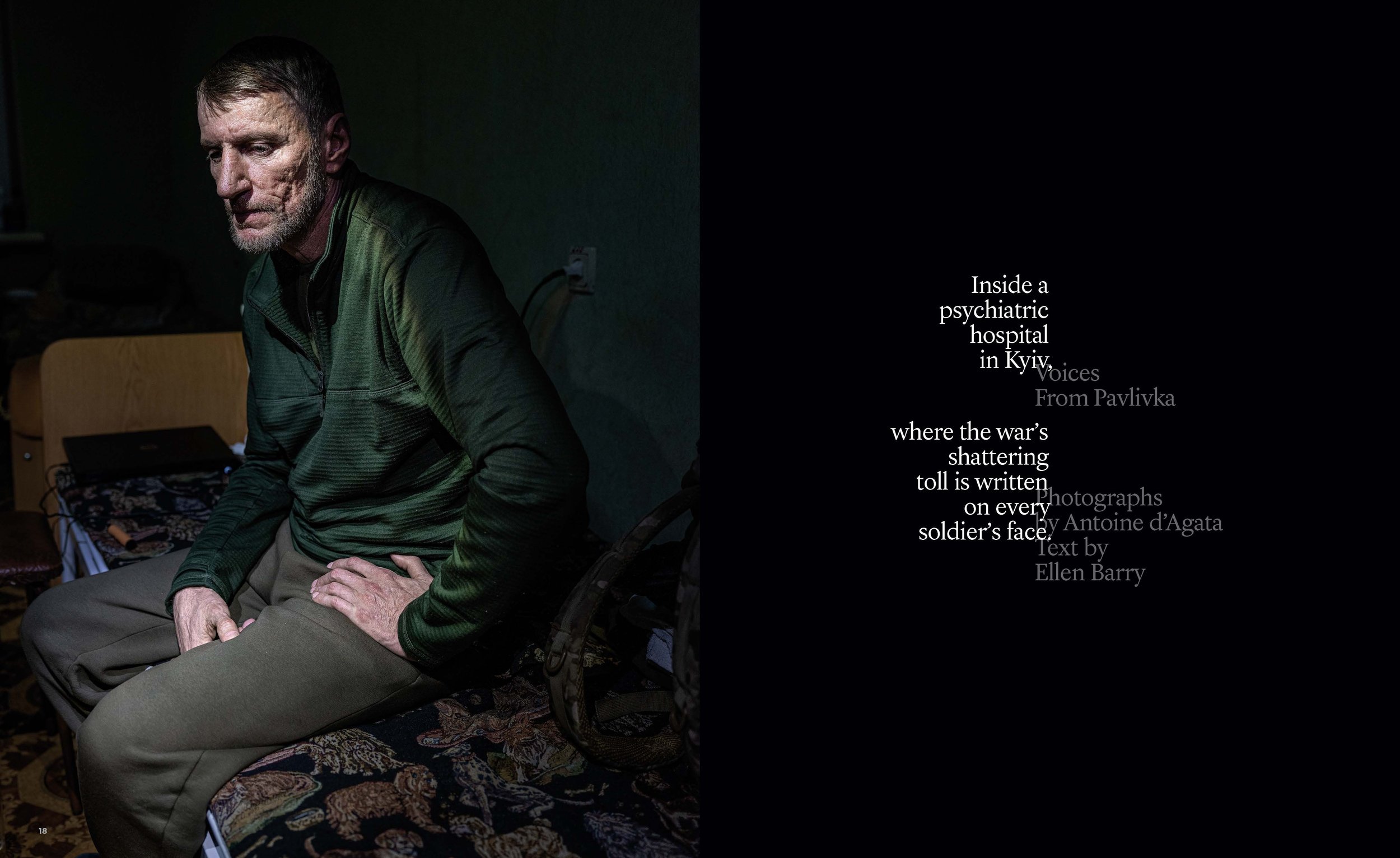
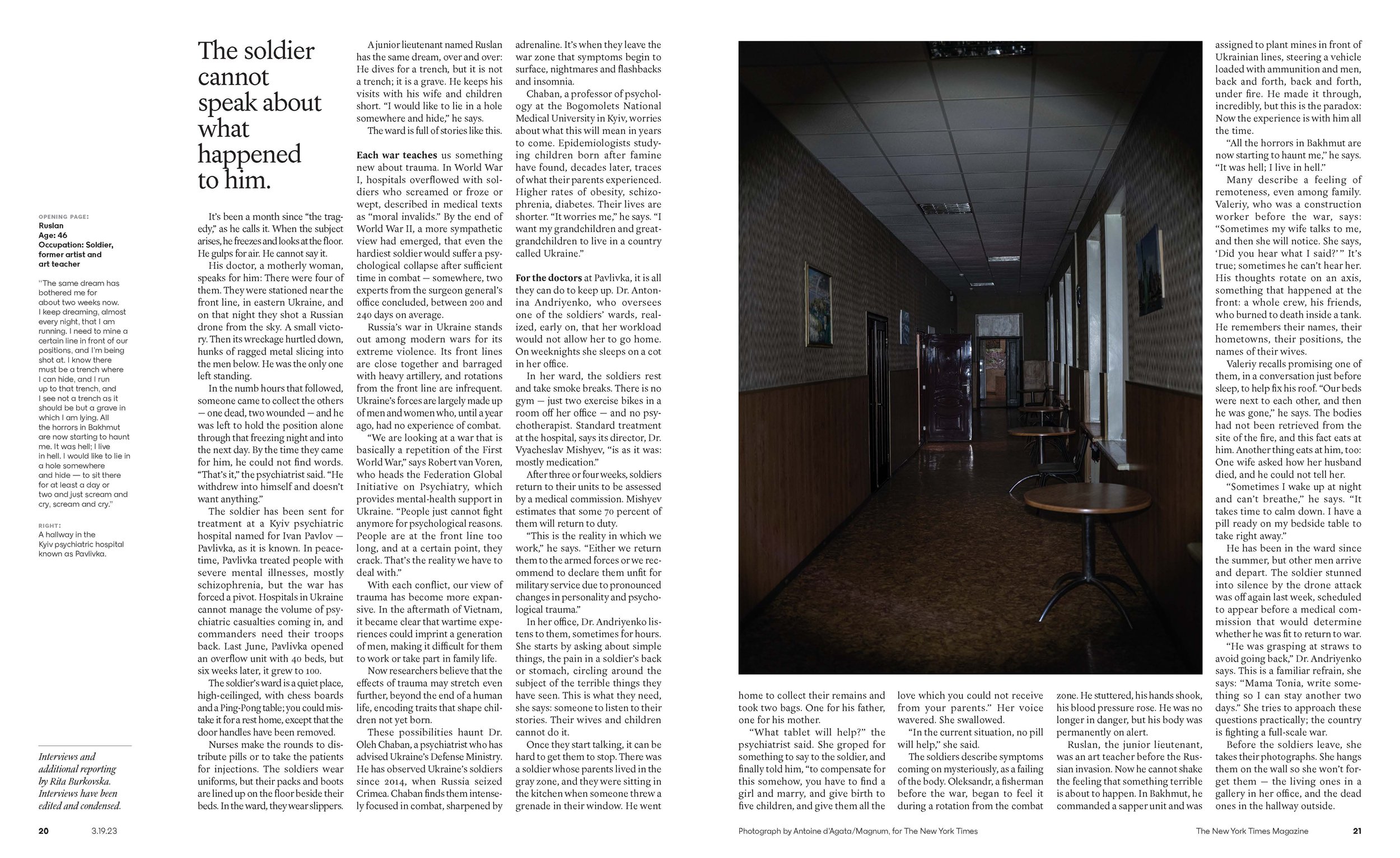

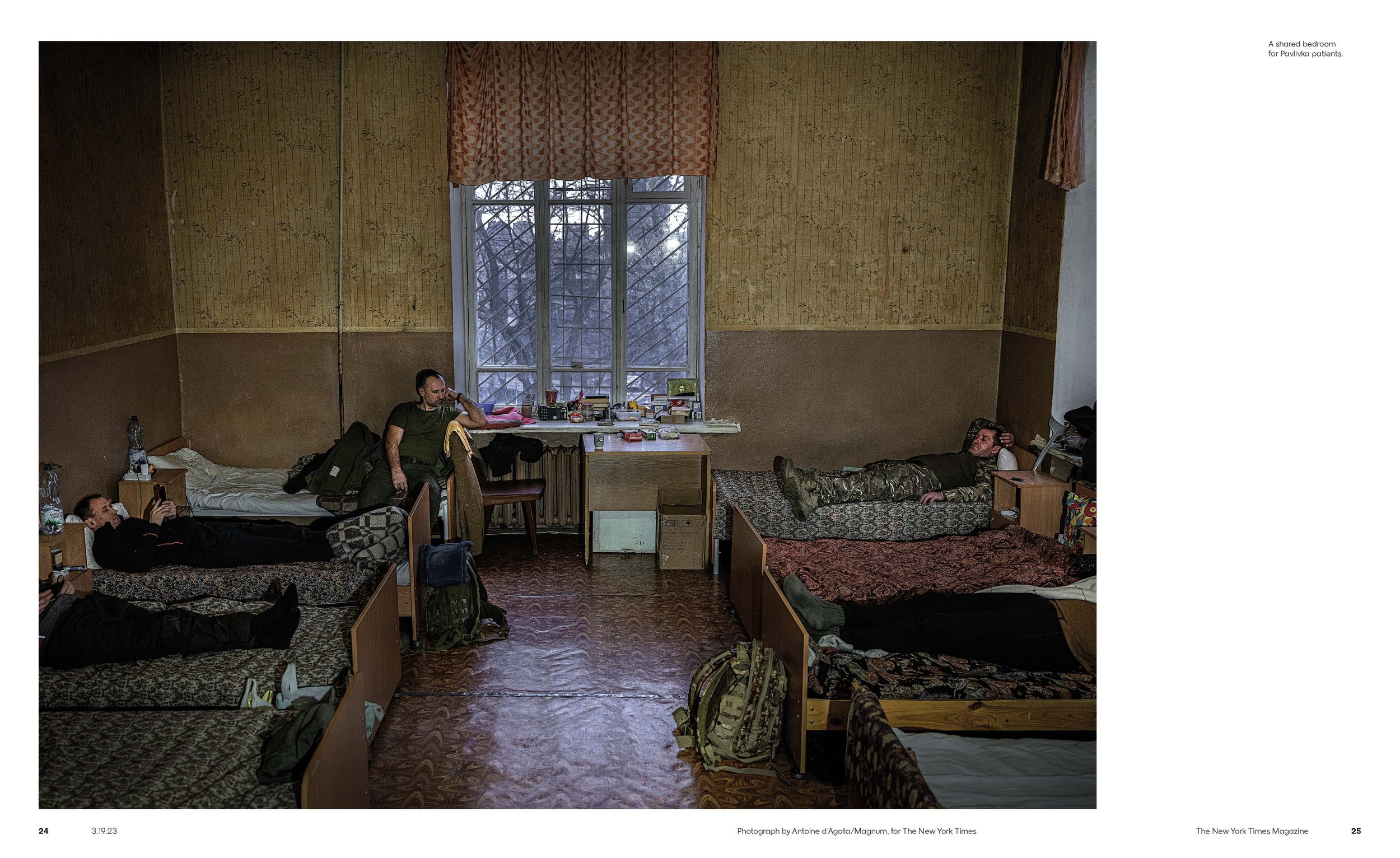
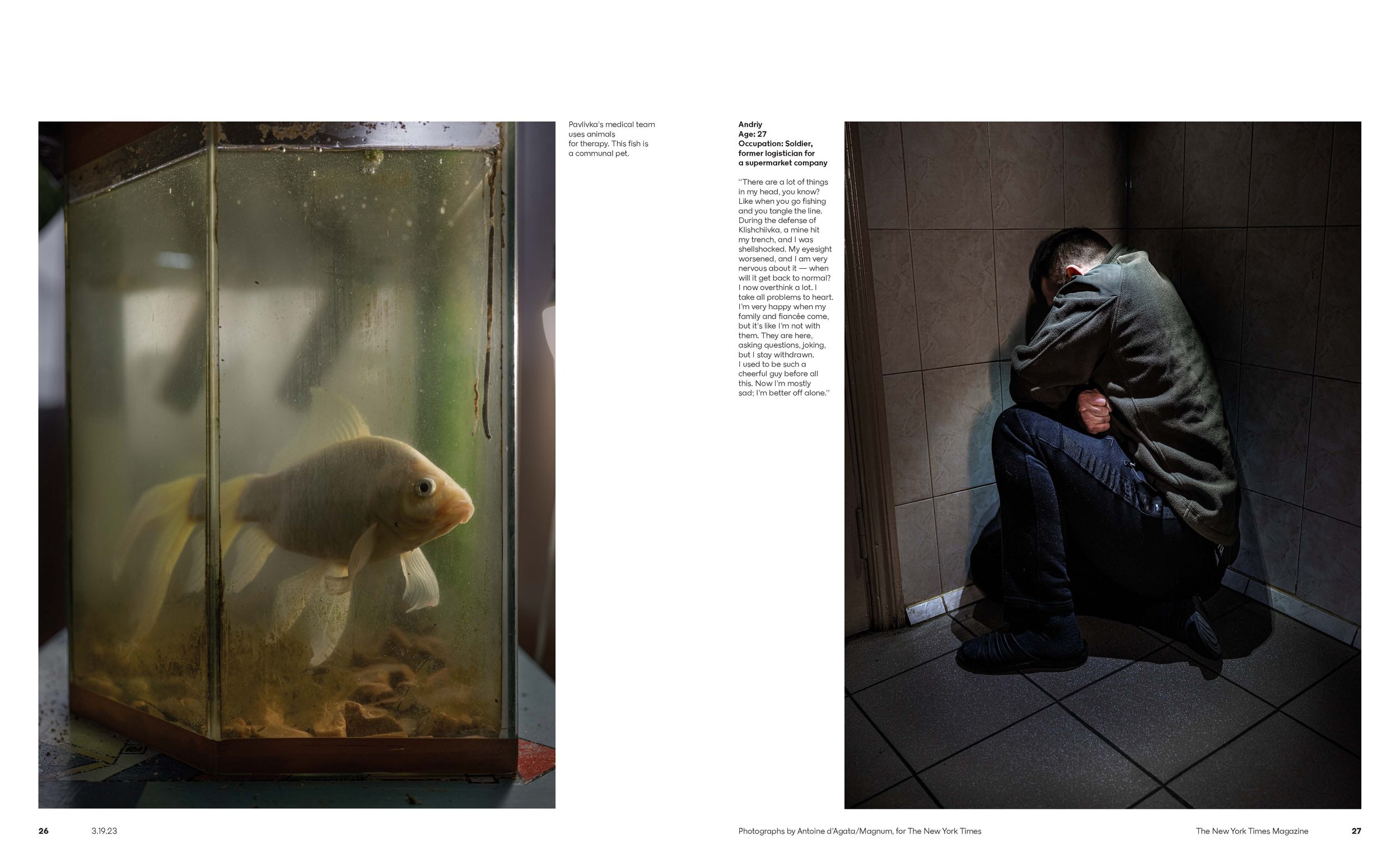

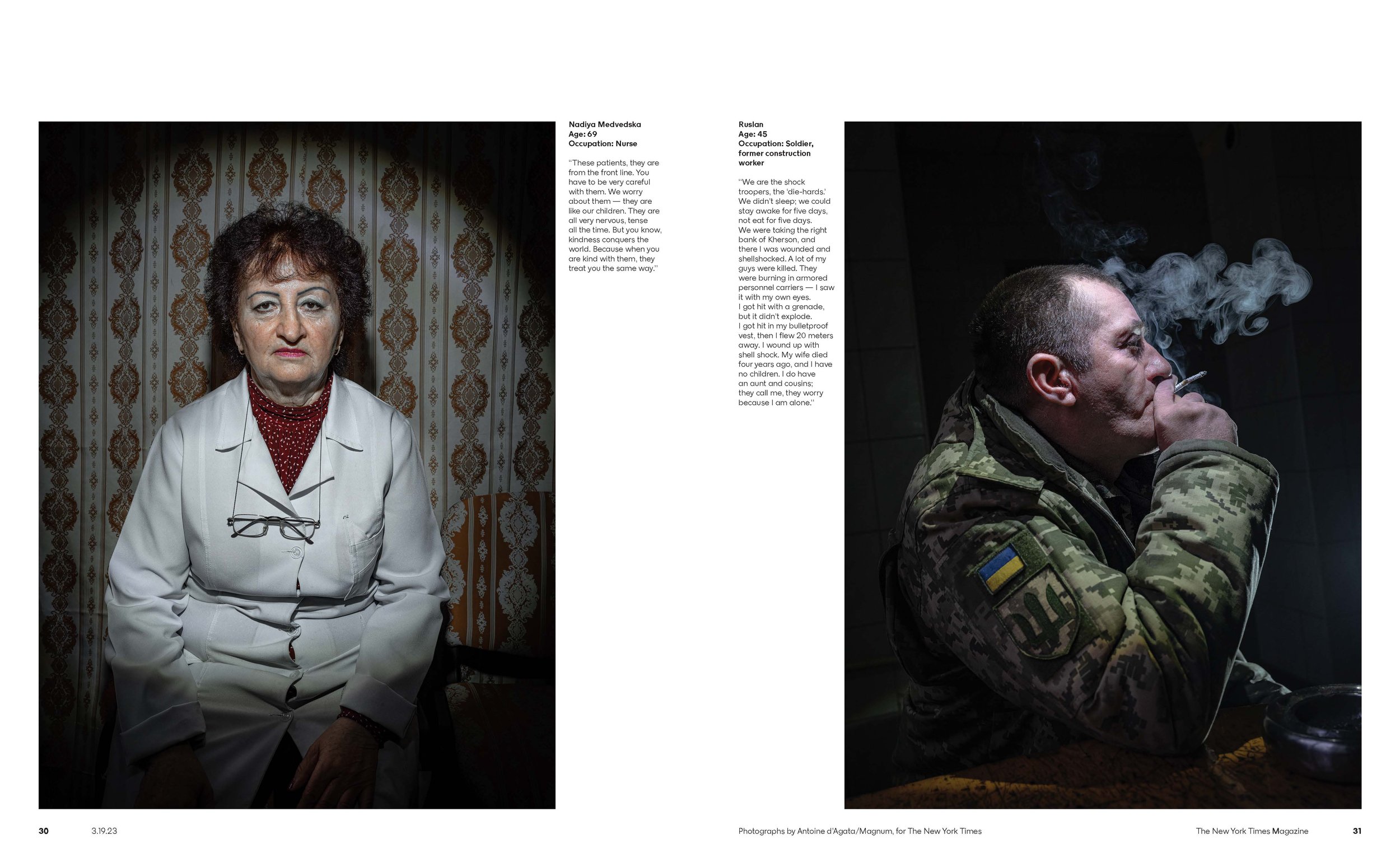
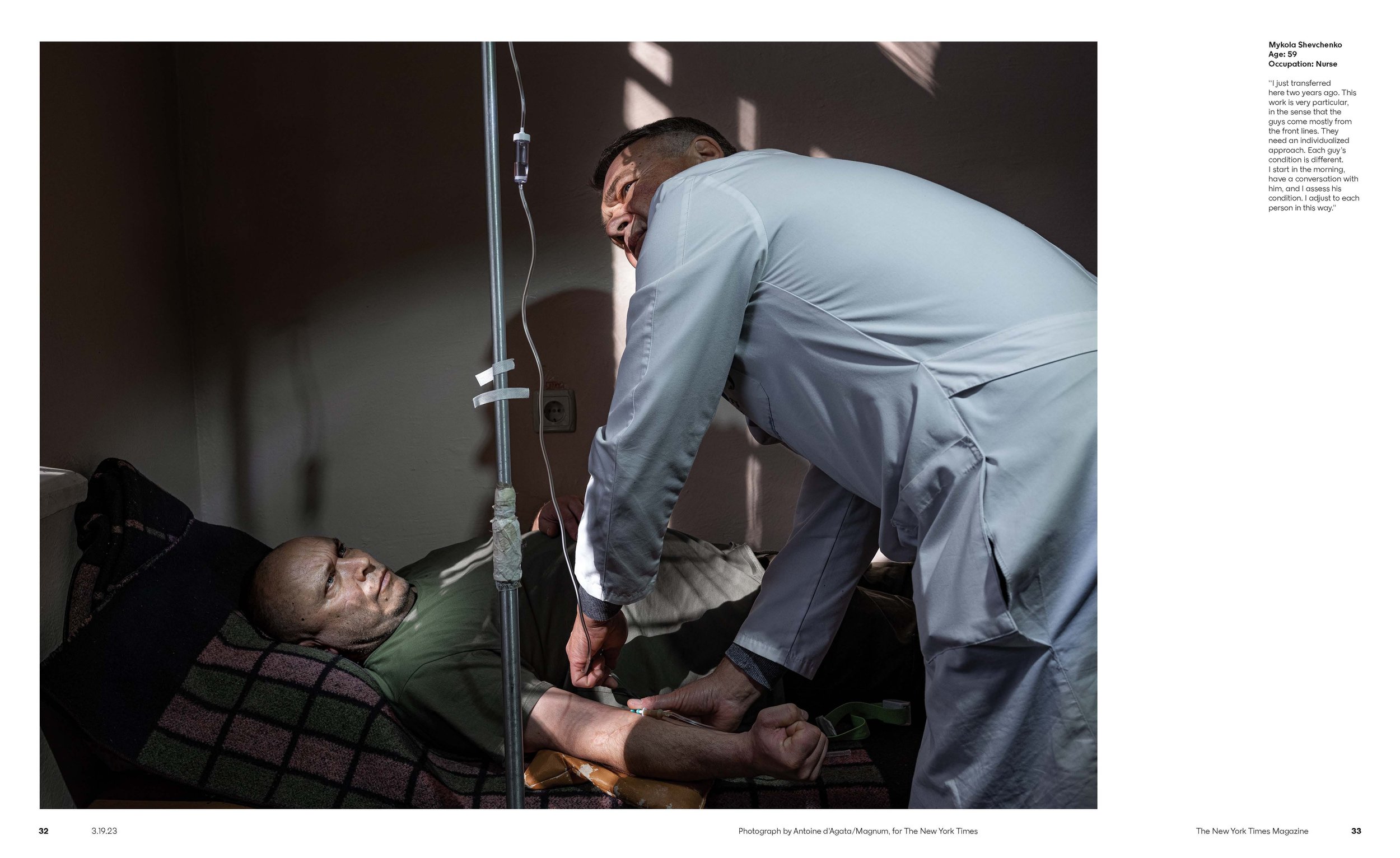
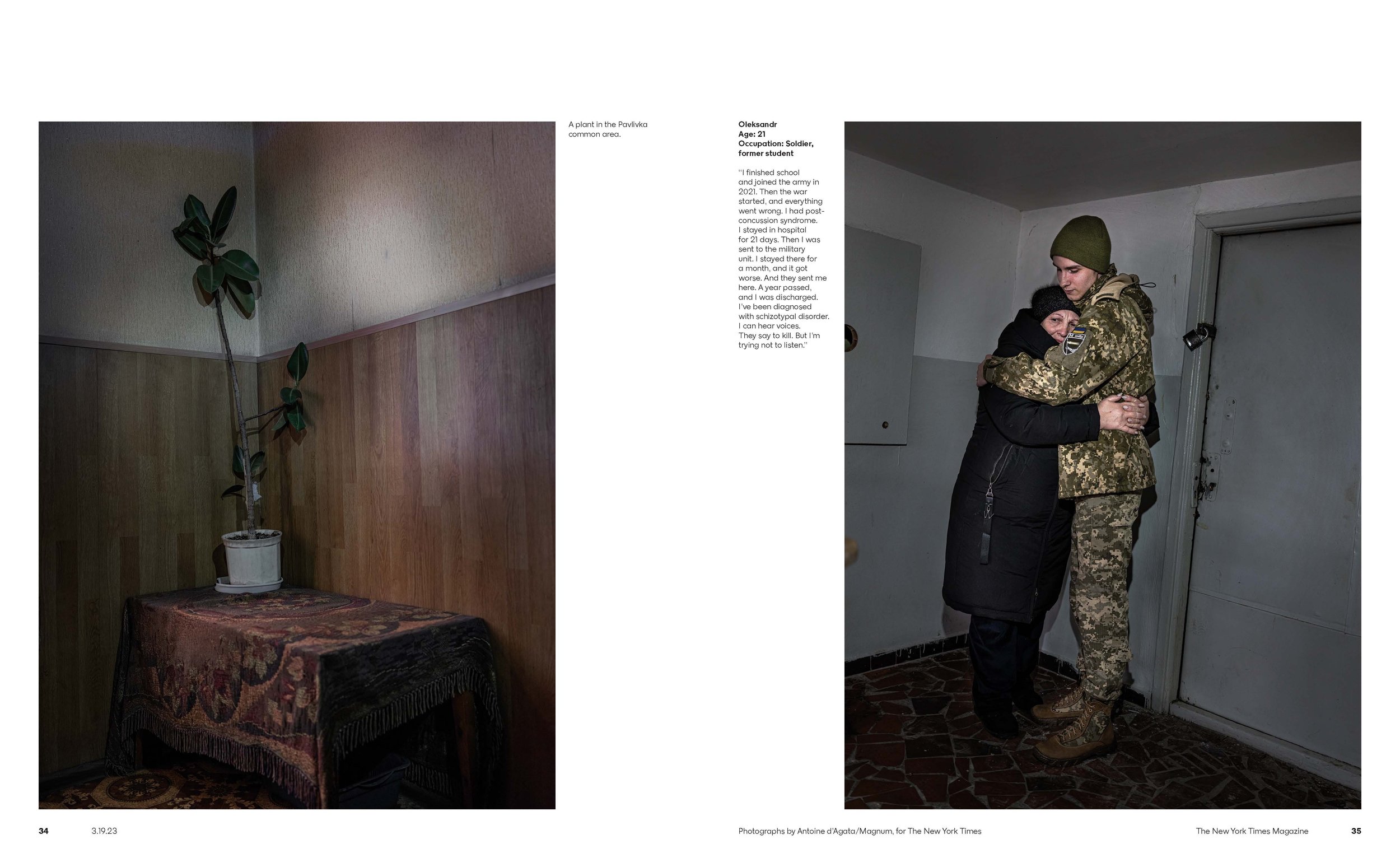
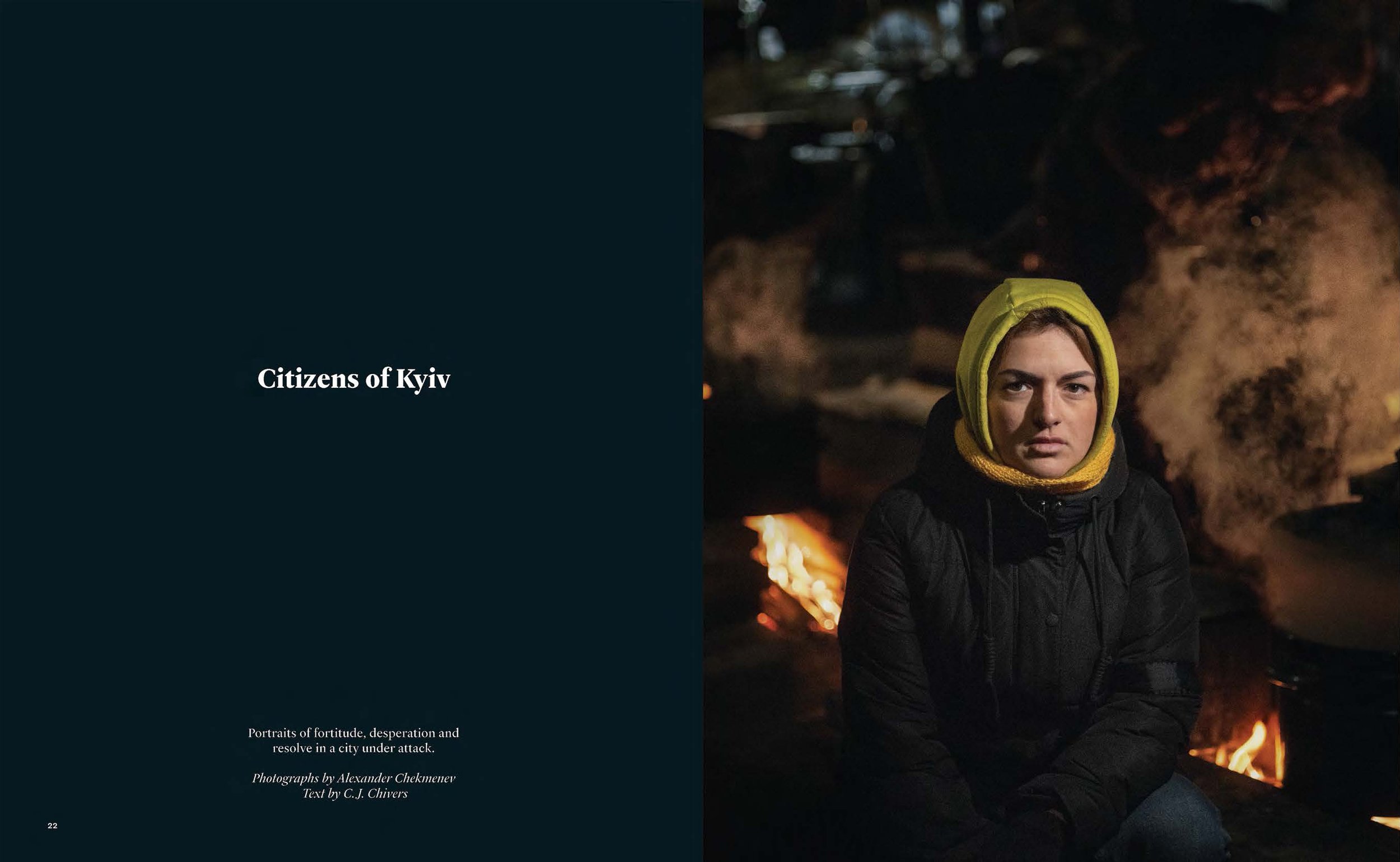
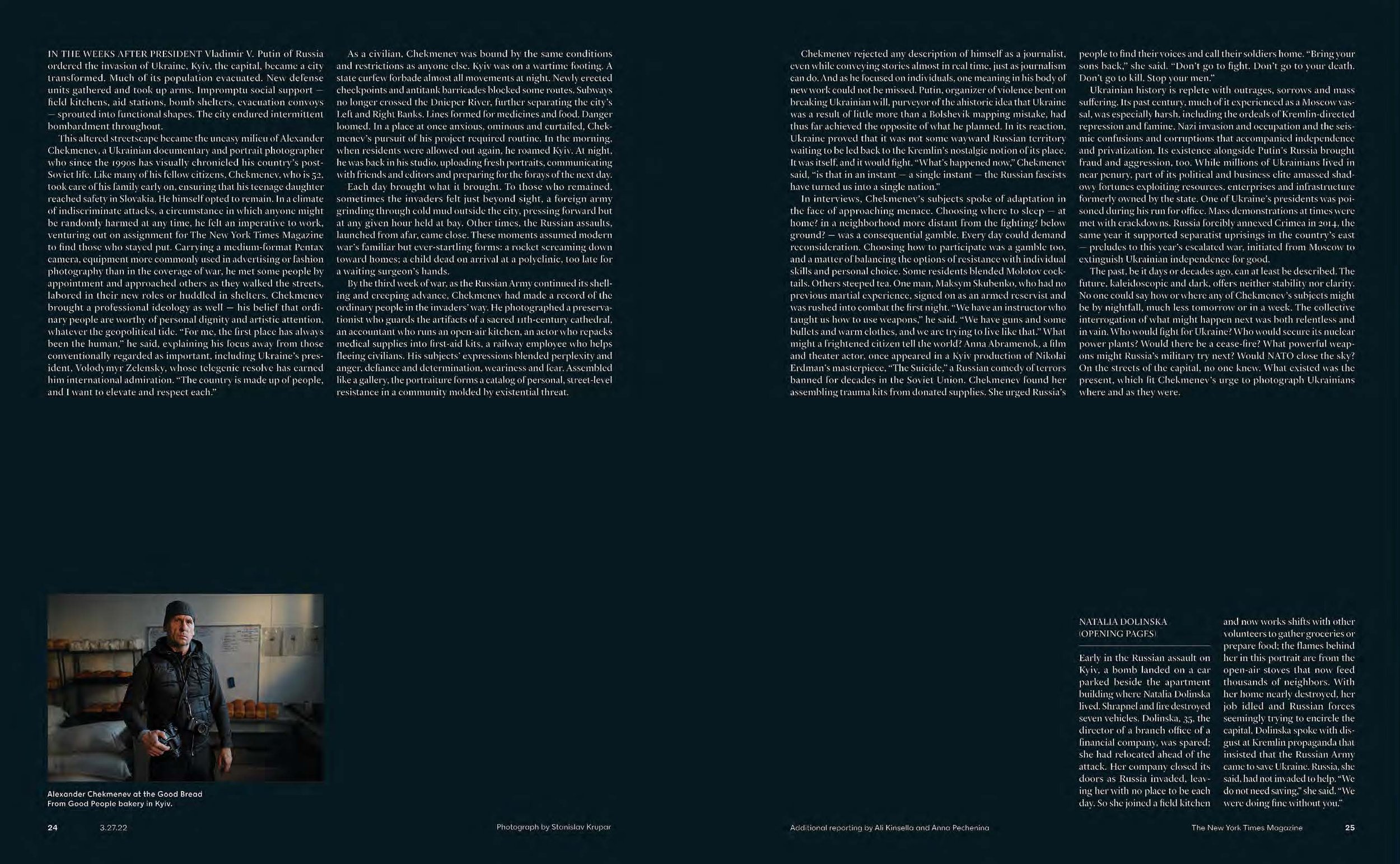

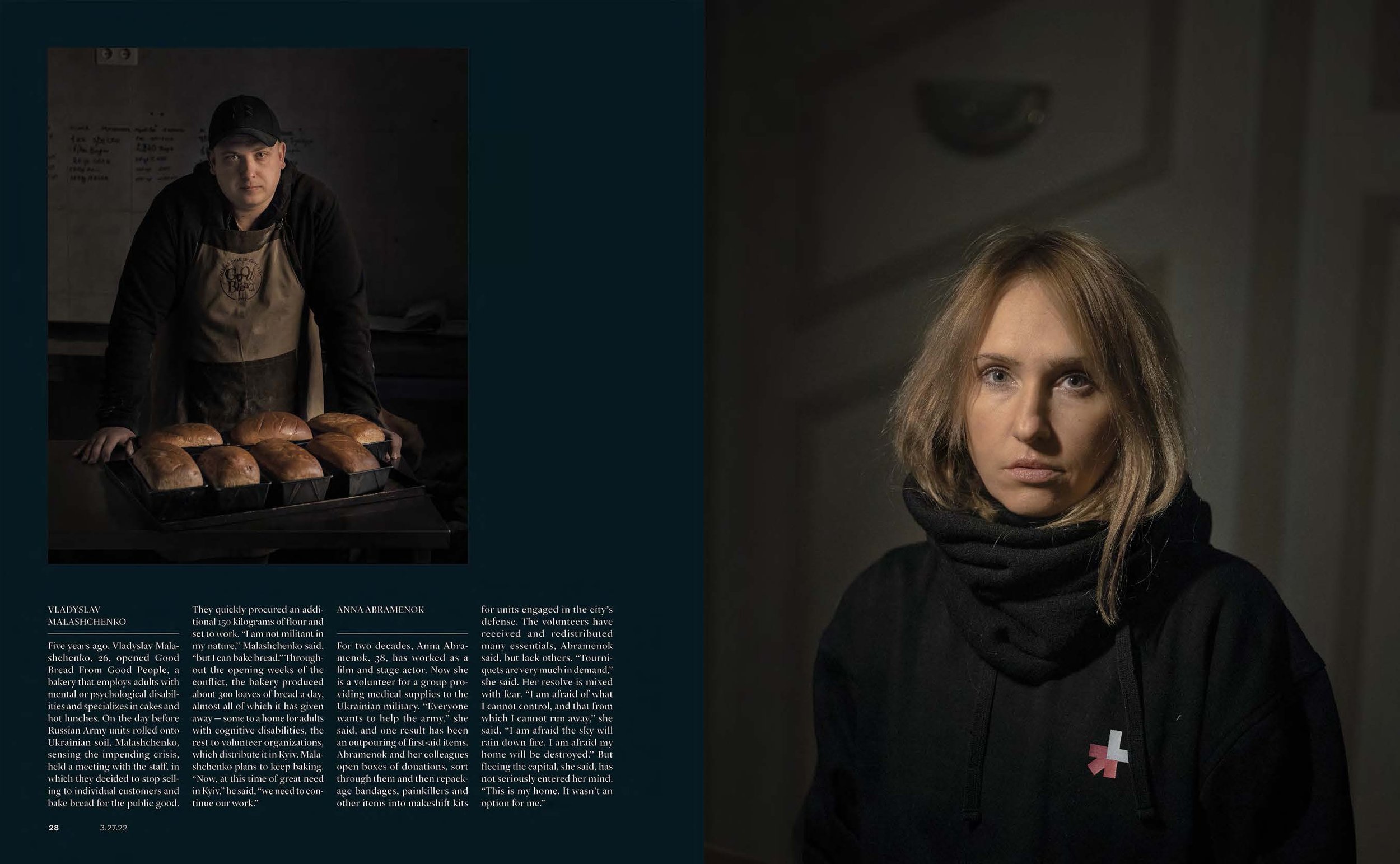
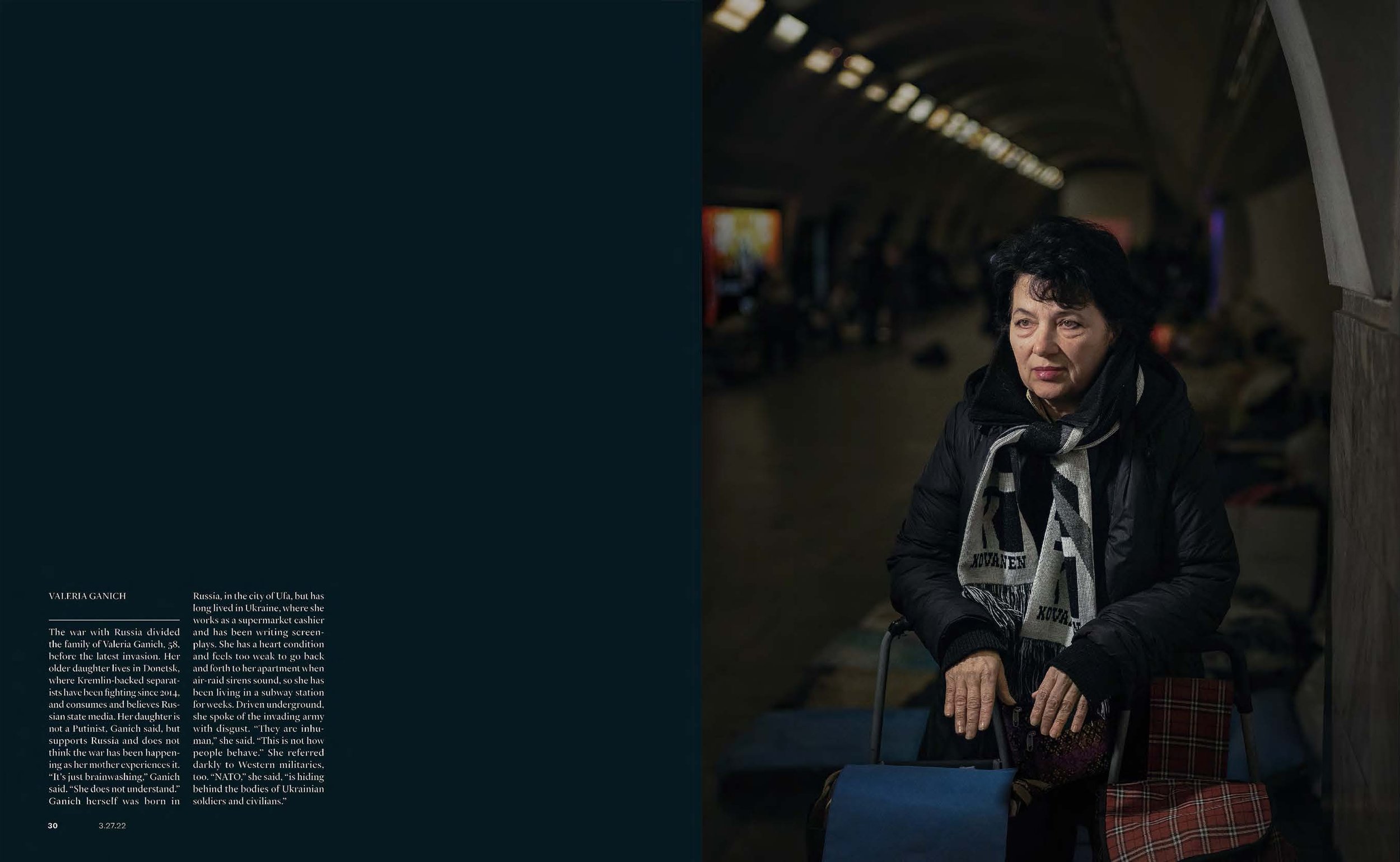
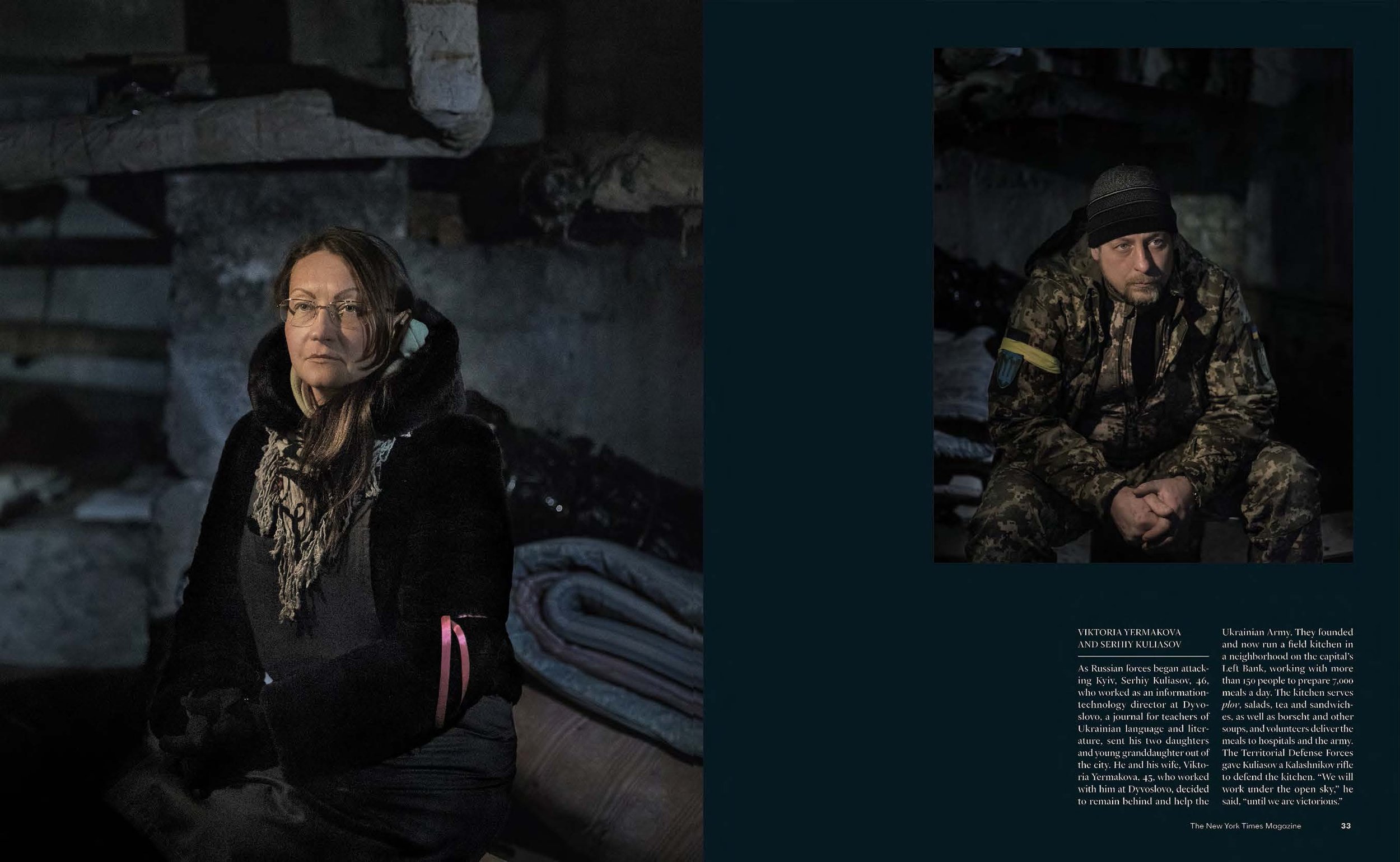
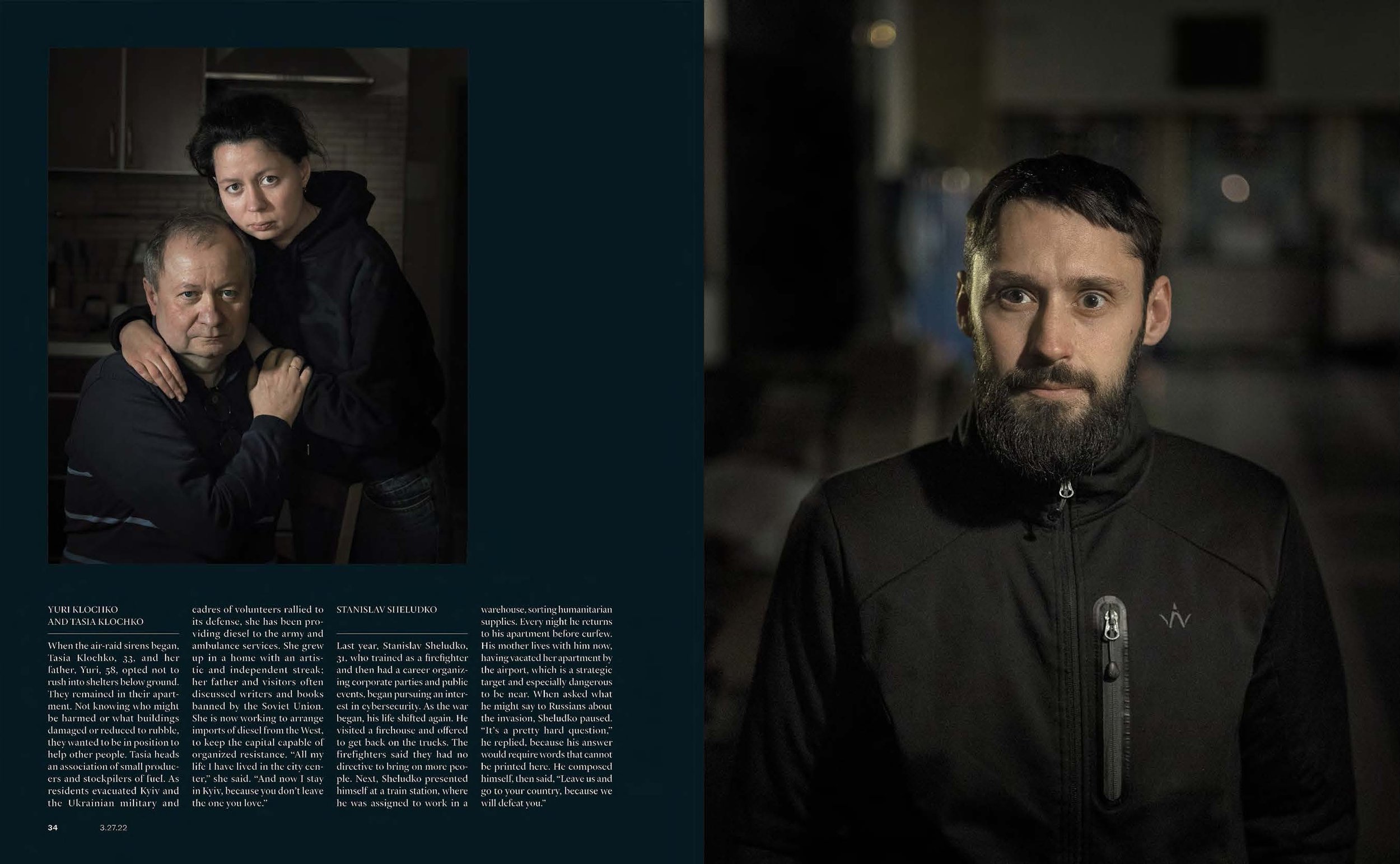


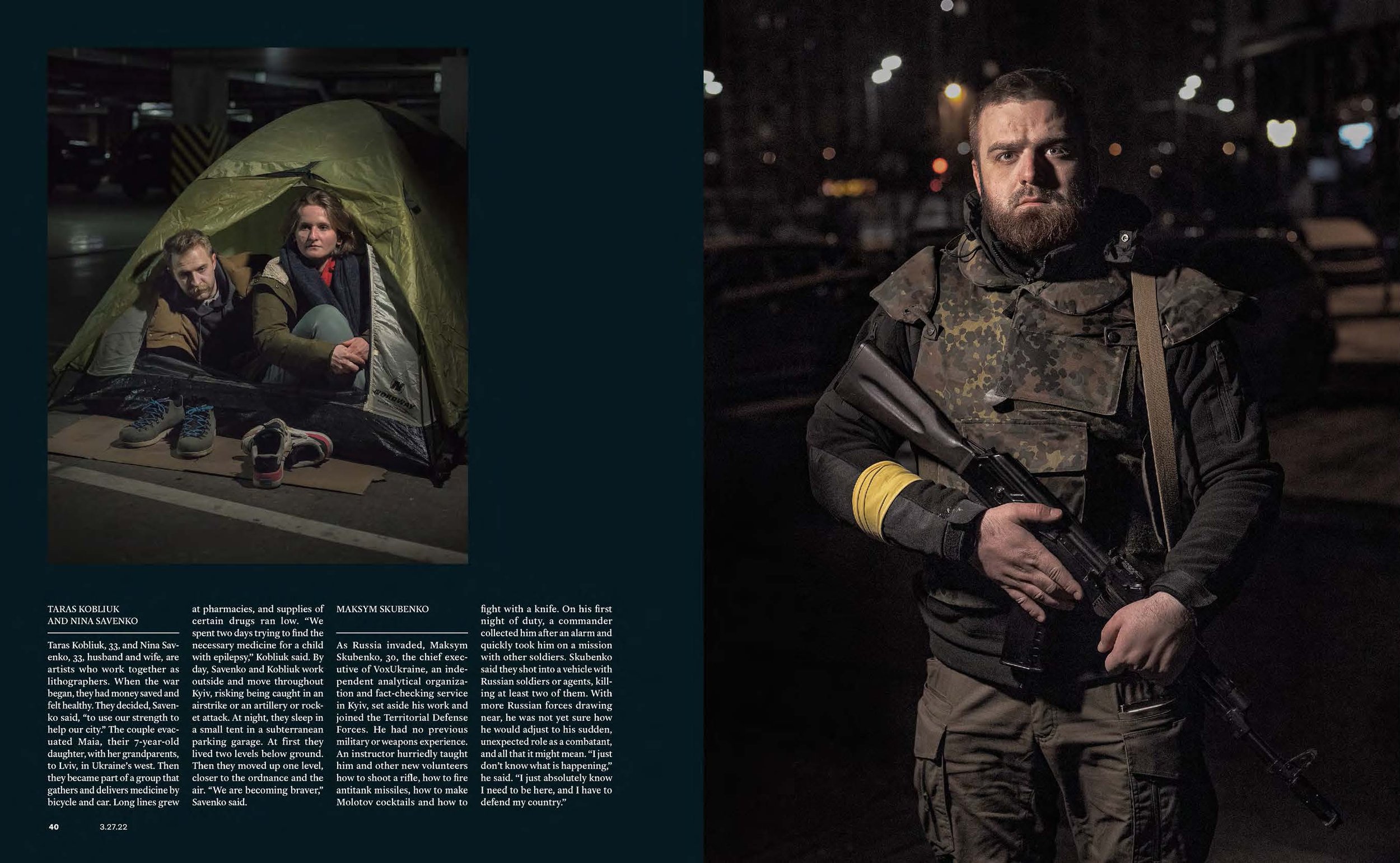



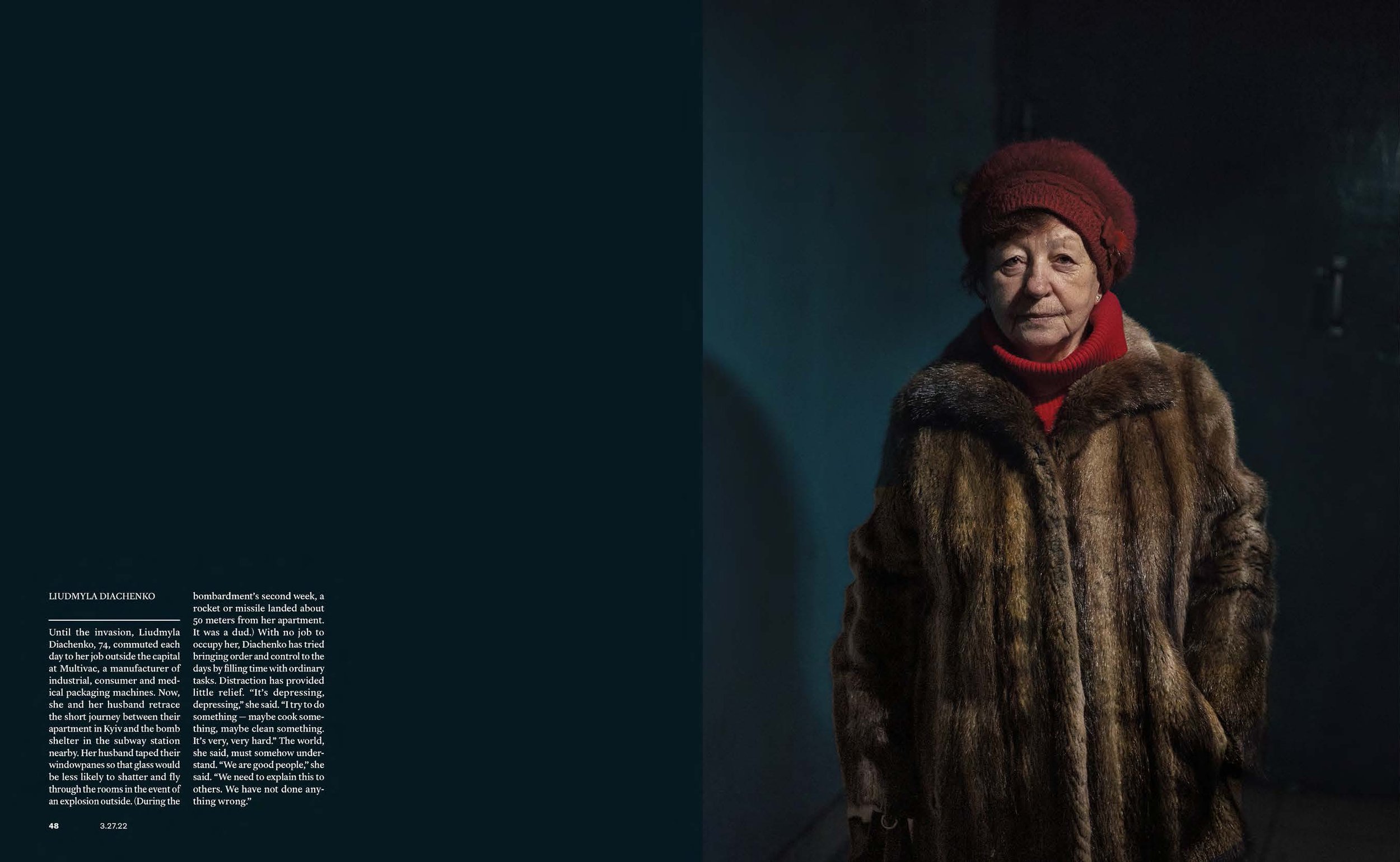
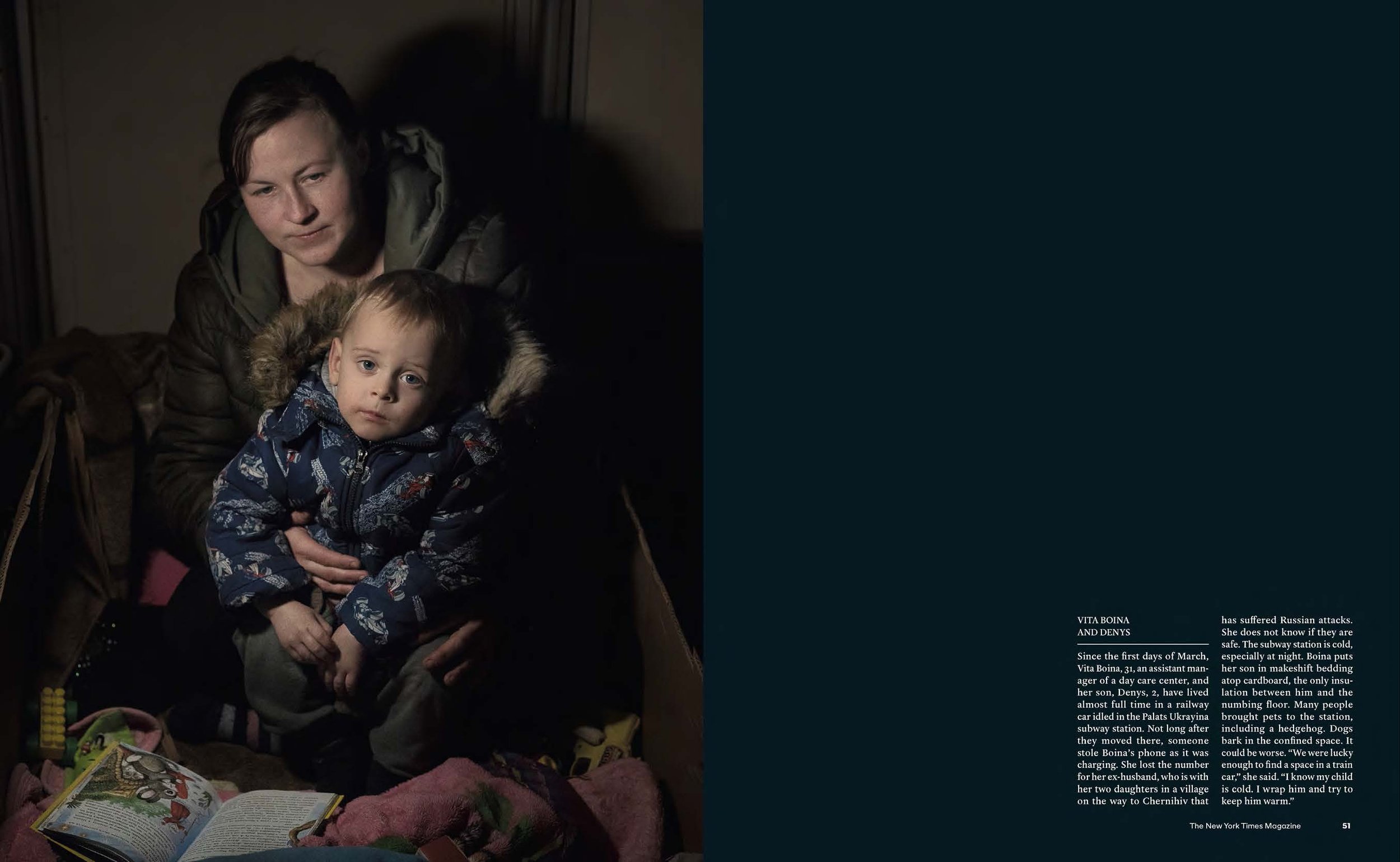
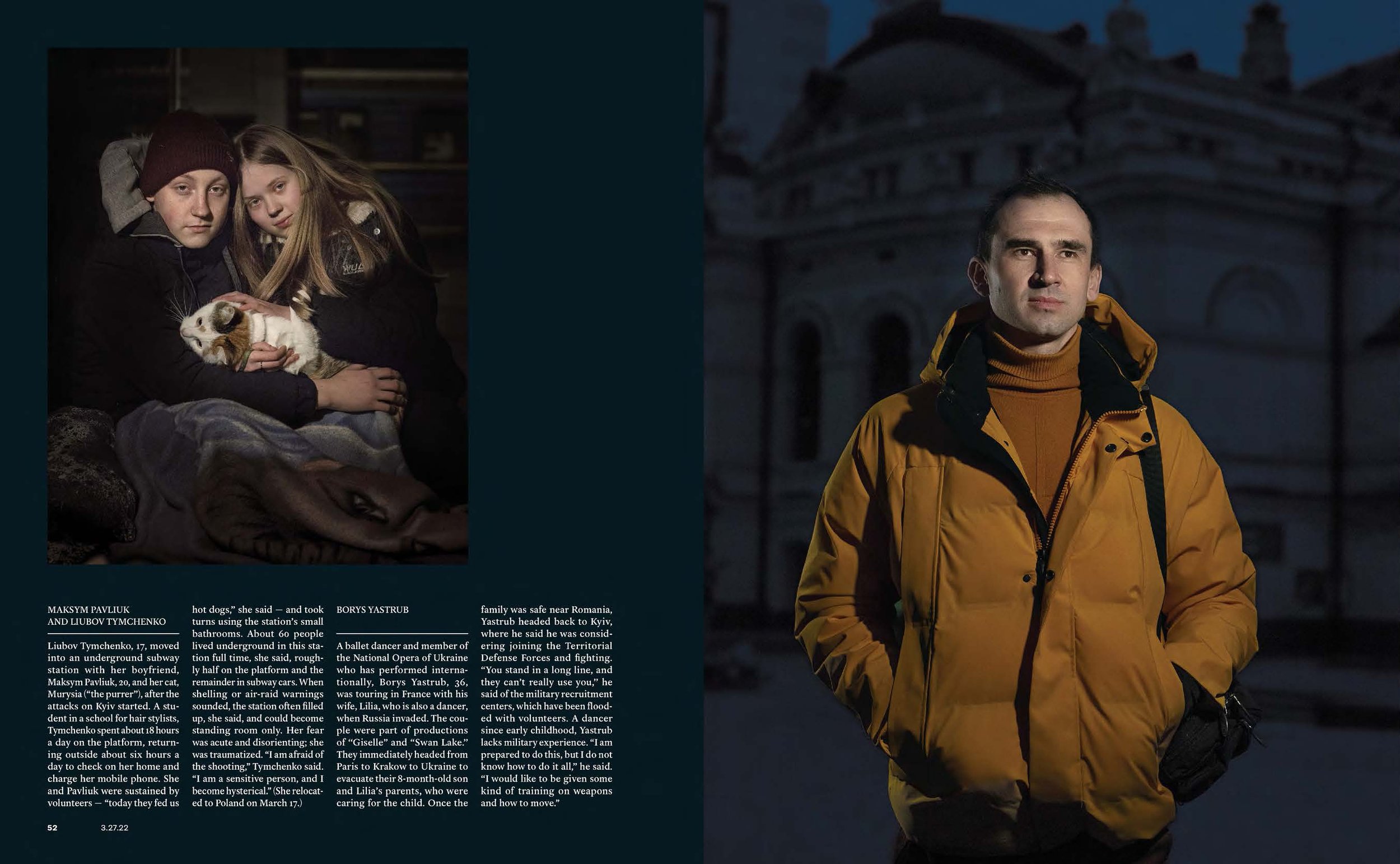
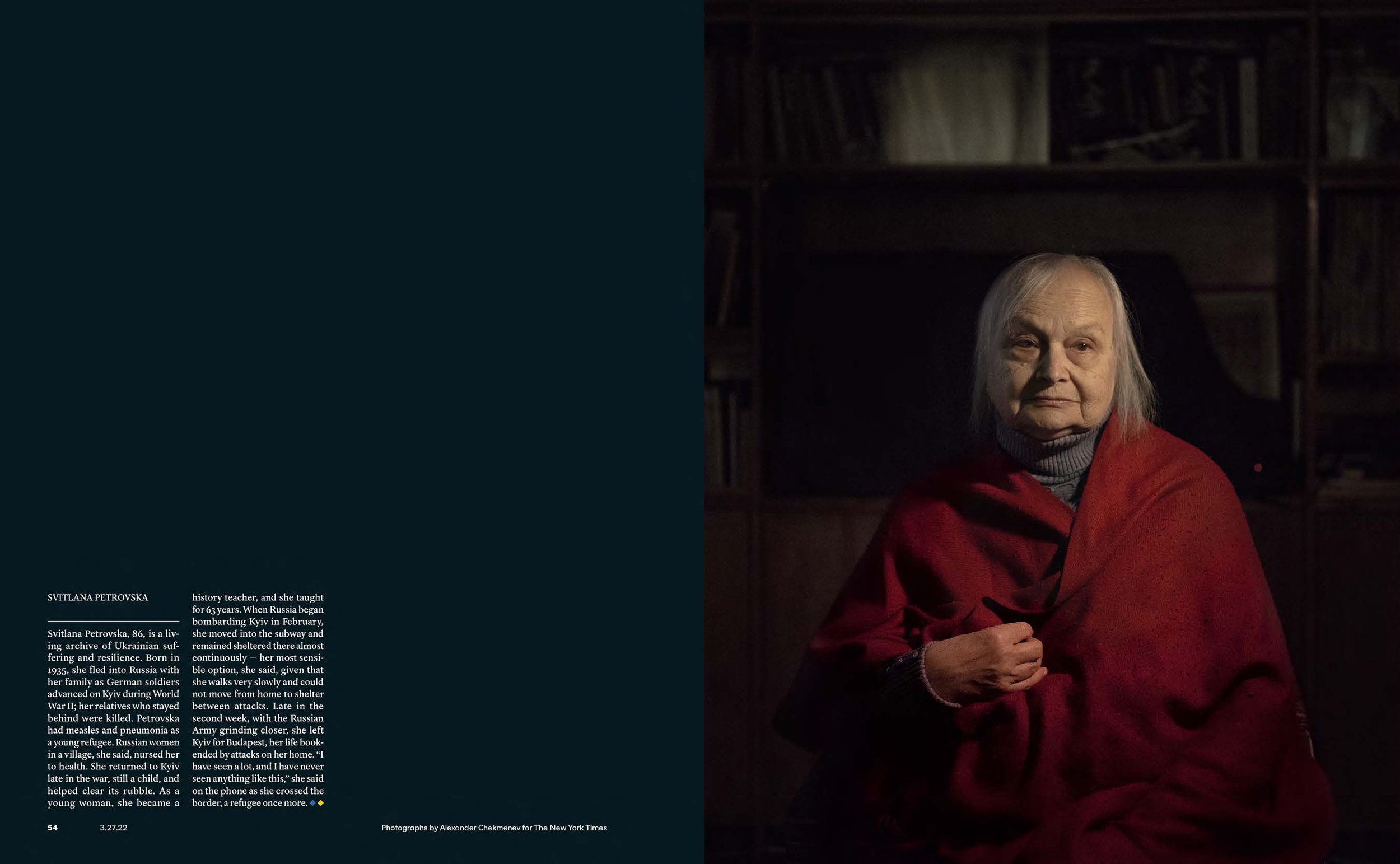
We cover all sorts of subjects. More so than almost any magazine. Our range is very broad—from the big, internationally reported pieces to The Way We Live Now features to the cultural stories. So we kind of cover it all, which, of course, makes it the most exciting job on the planet. Because one minute we’re producing a big shindig in Hollywood, and the next minute we’re doing something far more serious—figuring out how to cover the invasion in Ukraine. But then, of course, the most important decision you make is who’s the best photographer for the assignment.
And then figuring out the cover is its own thing. So a lot of my time, and Gail’s, and Jake’s, and our team’s, is spent figuring out what we should try to do for the cover. And right away: Is it photography? Is it illustration? Is it a photo illustration? Do we think this is a story that we want to go documentary? So that gives you some idea.
The other day I was talking with Jake and he said something I thought really made sense. He said, “Basically we do three things. One is artistic, obviously. One is the expression of ideas. And then the third is deadlines.” You know, it’s a weekly and I cannot stress enough that it’s always at an accelerated pace.
Just about everything we do is full throttle, meaning as fast as we’re assigning one thing, we’re thinking about the next one. We’re trying to get it lined up.
George Gendron: I’m curious, you talked about the cover. You have one luxury that the rest of us in the mainstream magazine industry have never had, which is you don’t have to worry about newsstand sales. And I think that’s really liberating. And I’m curious about your response to that. So how do you think about the cover? What’s the role of the cover within the Sunday paper?
Kathy Ryan: I think the role of the cover is to stand out. So when somebody opens up their Sunday paper, their bundle, you want the cover to call attention to the stories inside. So I think of it, first and foremost, to get people into the magazine. We’re very aware of how fortunate we are that we don’t have to compete on the newsstand. That has always been a gift because it just means there’s a freedom—the decisions can be made in terms of what’s the best artistic approach.
And Jake is a big believer in that. What does that mean? Maybe it means we can do something a little bit more obscure, less direct. Sometimes we have a chance to play around with more poetic imagery that wouldn’t stand out on a newsstand, but it’s a really thoughtful, beautiful picture.
Many of the conversations that we have, between me and Gail and our design and photo teams, have a lot to do with that. What works as a cover image is often different. But then again, our covers vary widely. There’s not a look to them because one week it’s our Great Performers portfolio that we do once a year, pegged to the Oscars. And then another week it might be pure documentary photojournalism. So we have a tremendous variety and we try to shift according to the needs of a particular story.
The Joys and Challenges of Sex After 70 Photographs by Marilyn Minter
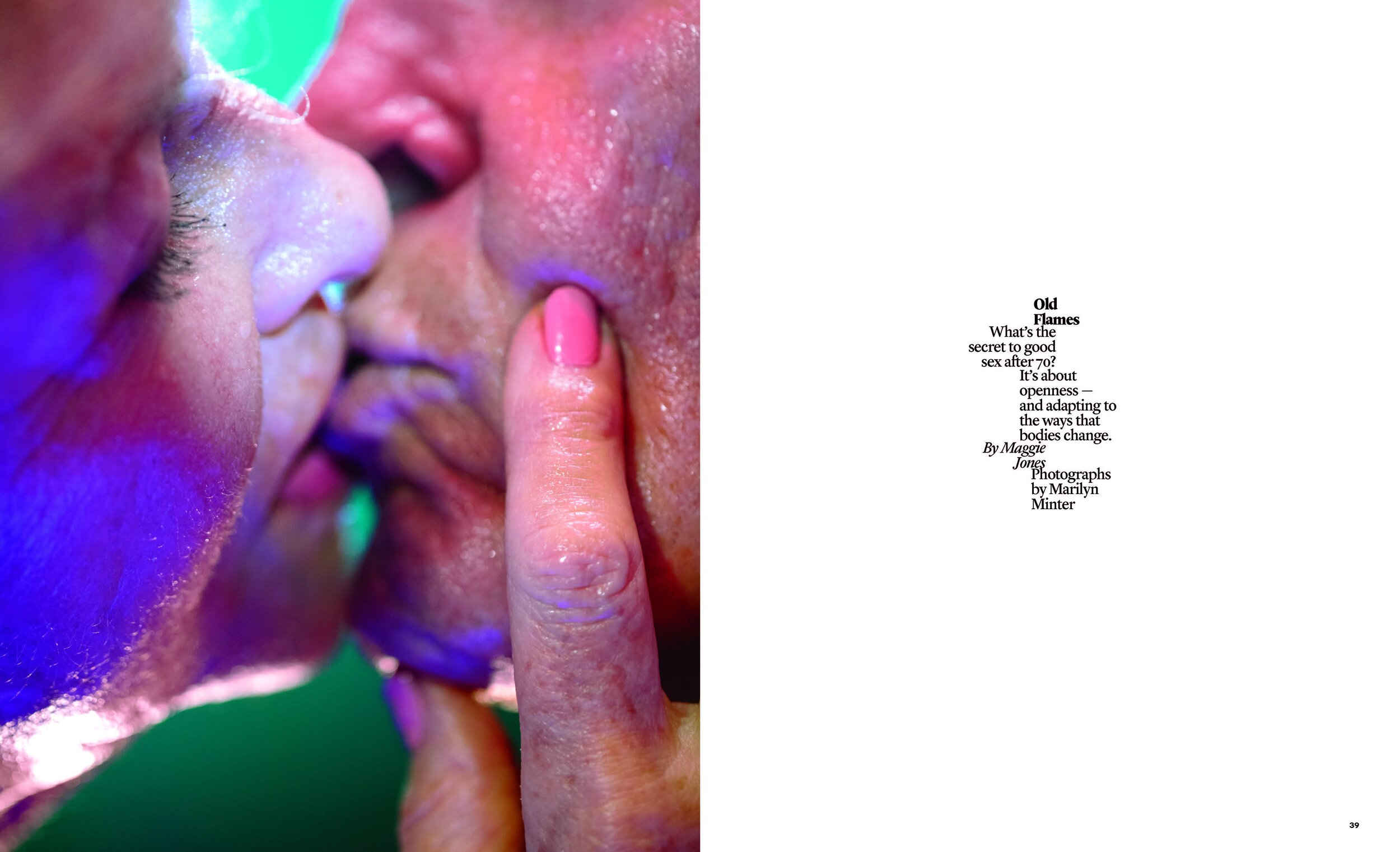
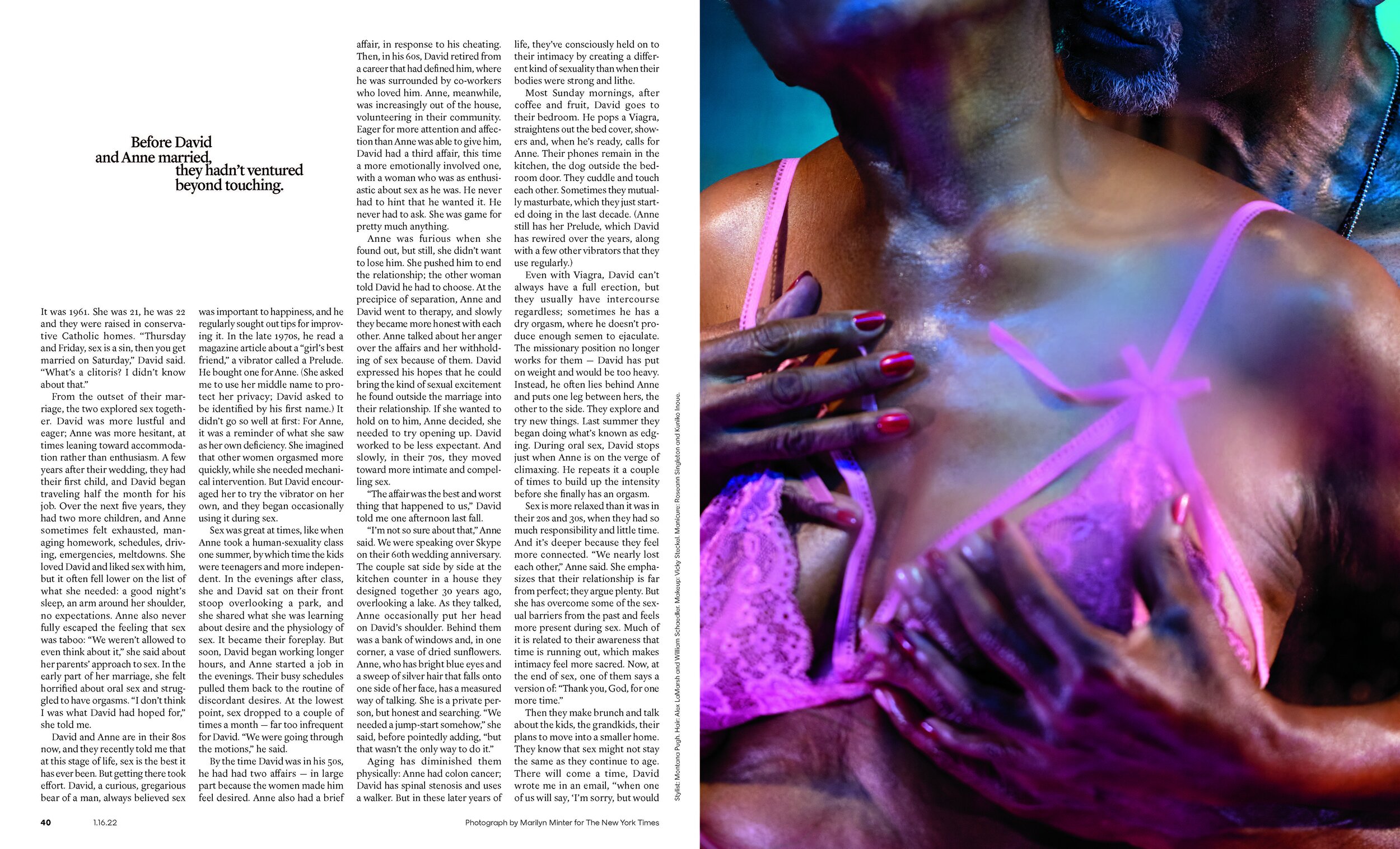
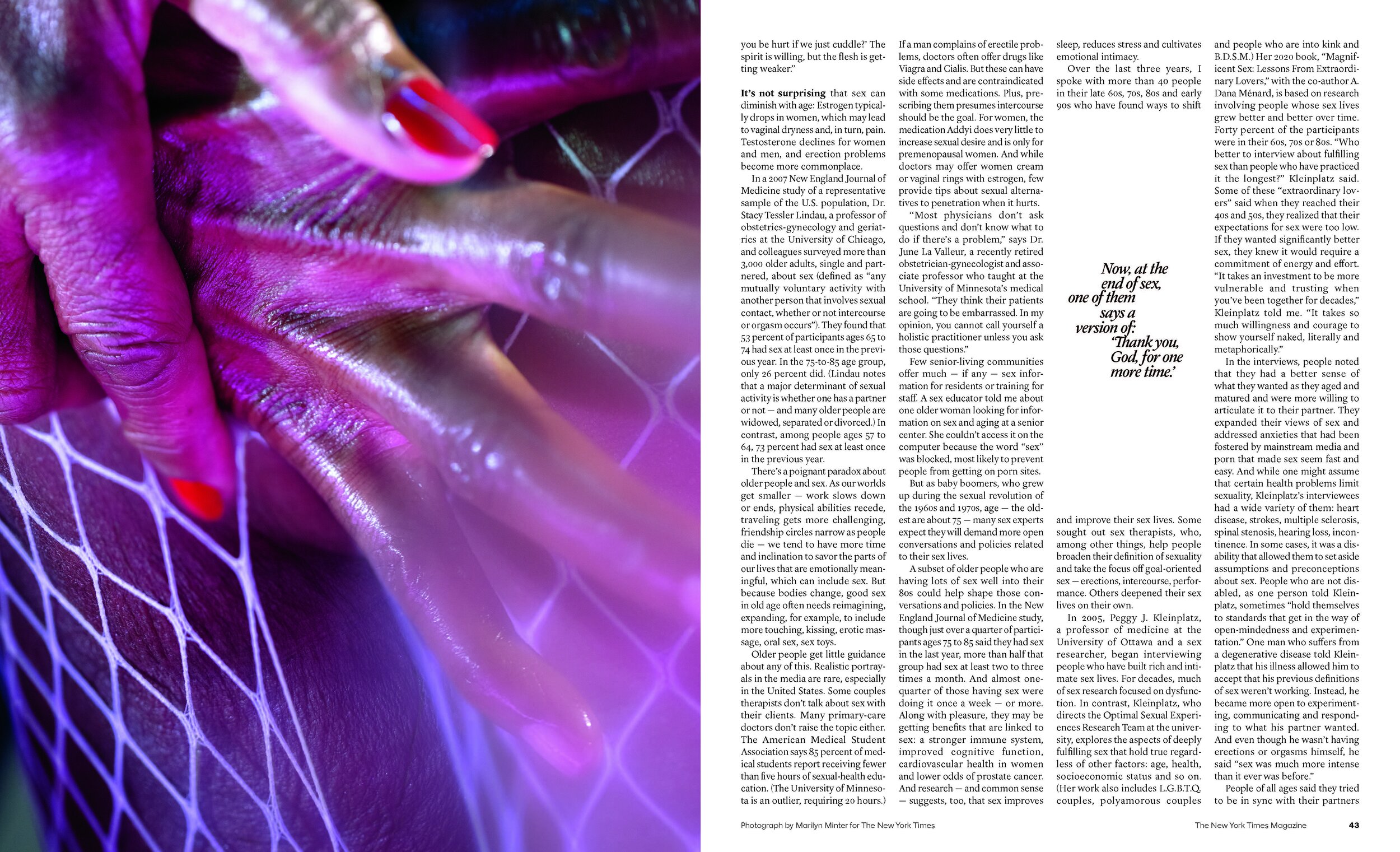
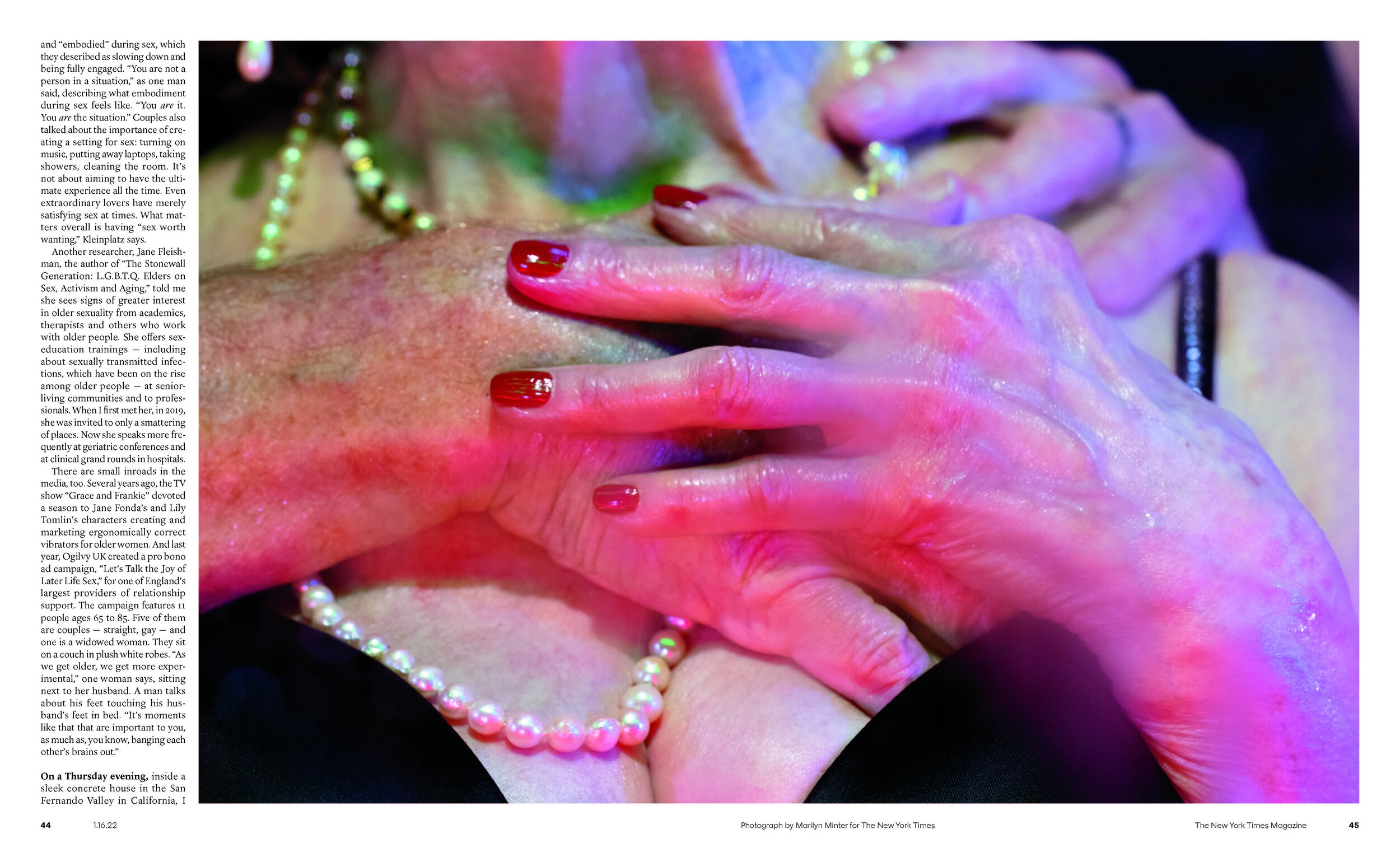
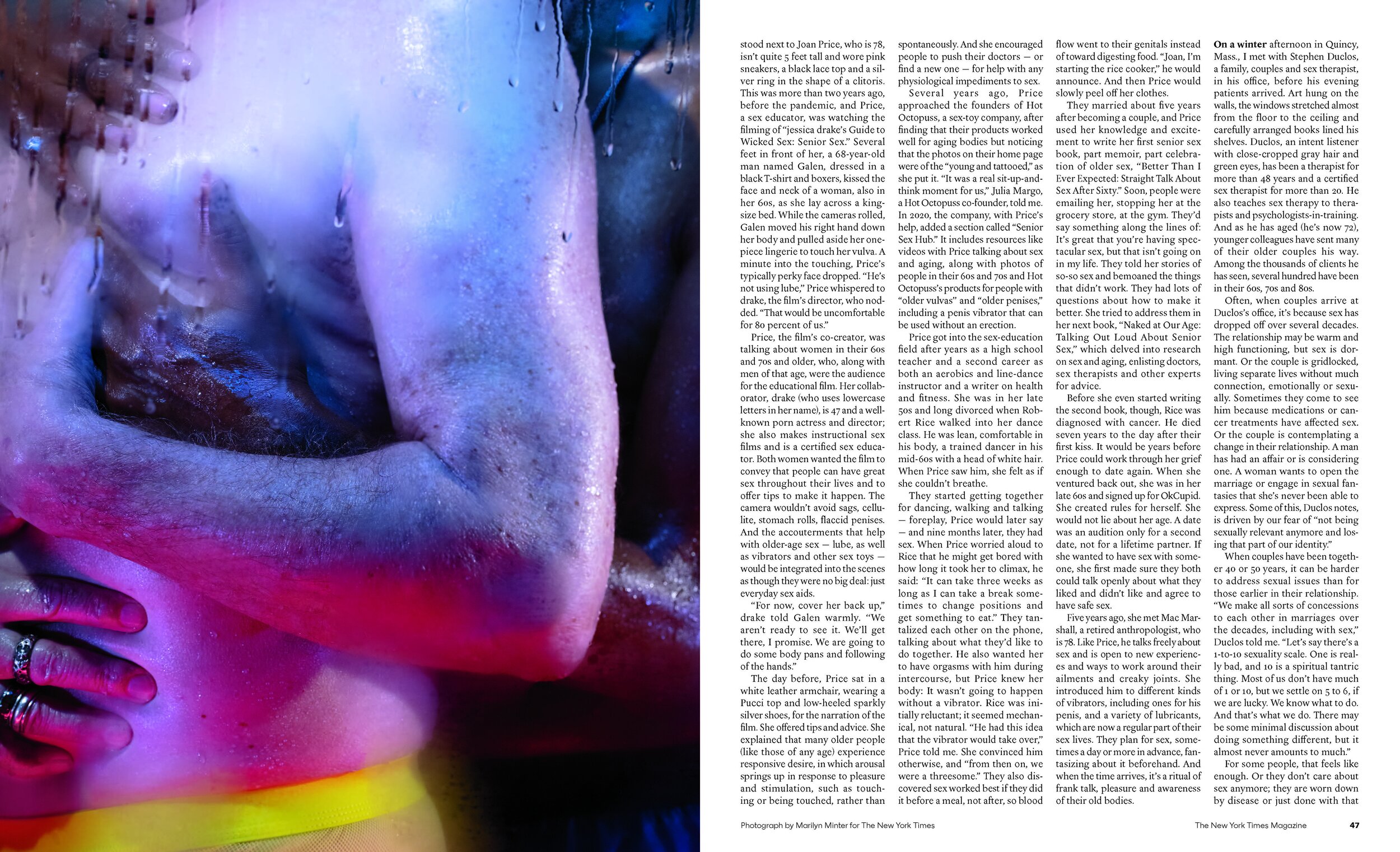
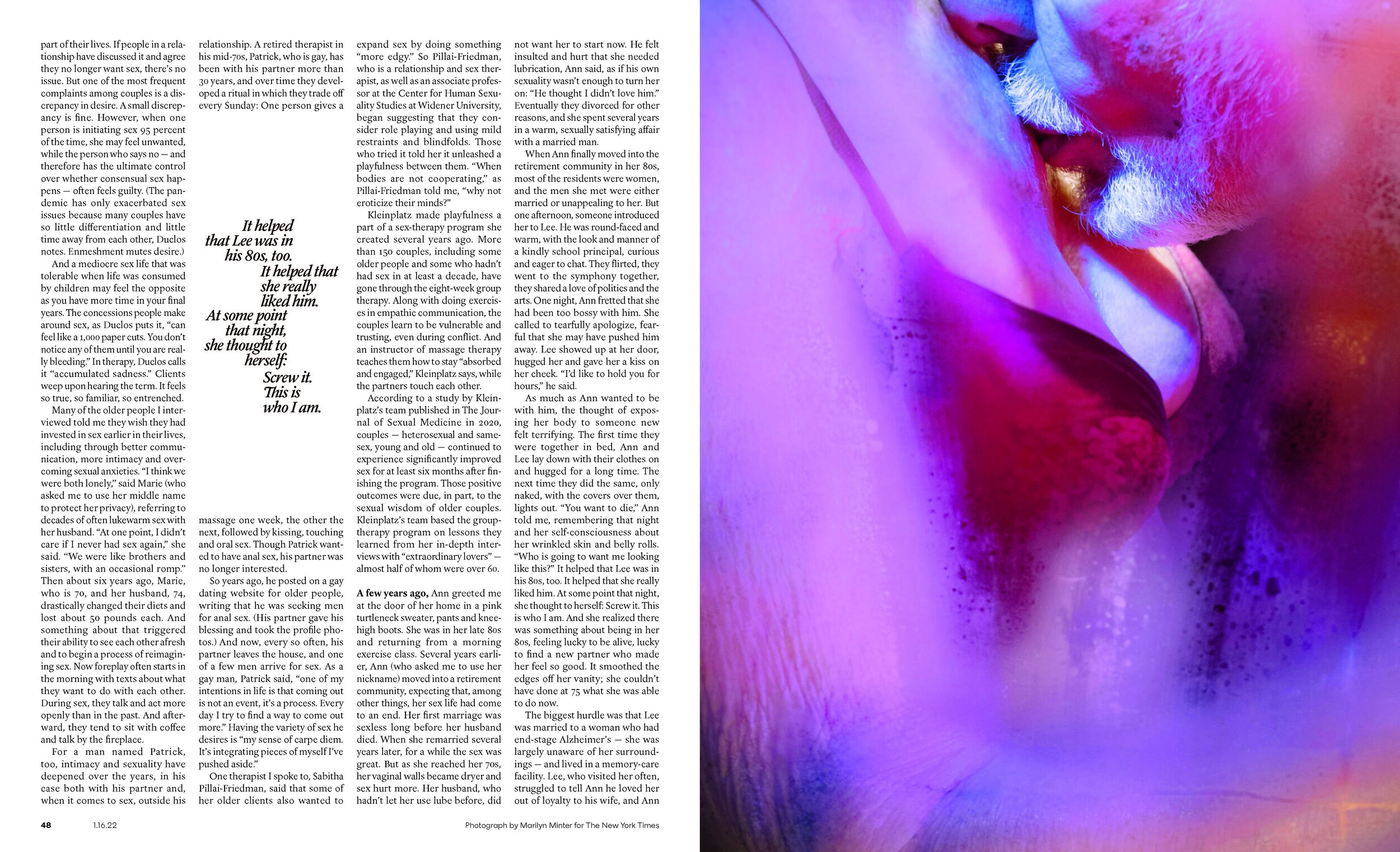
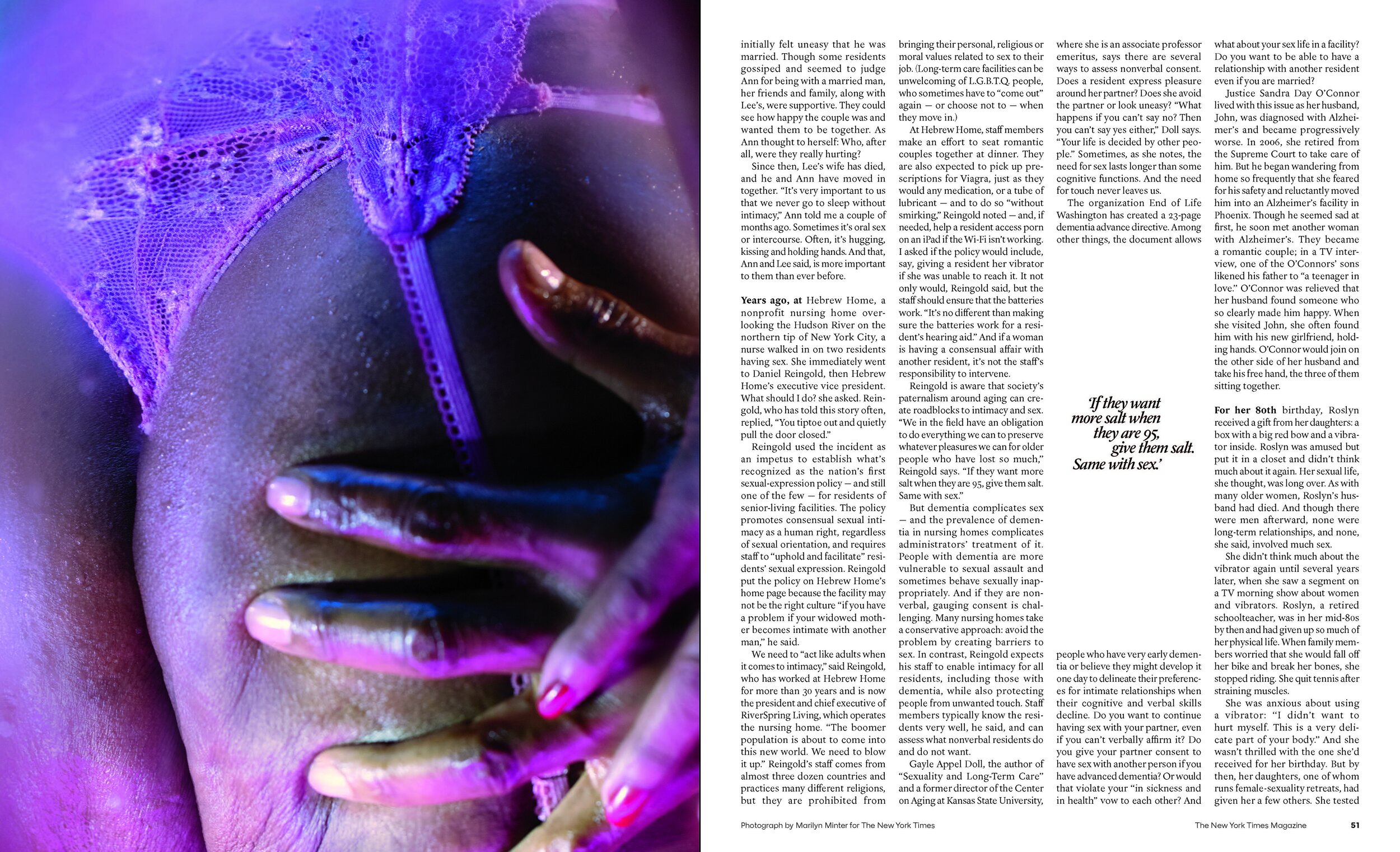
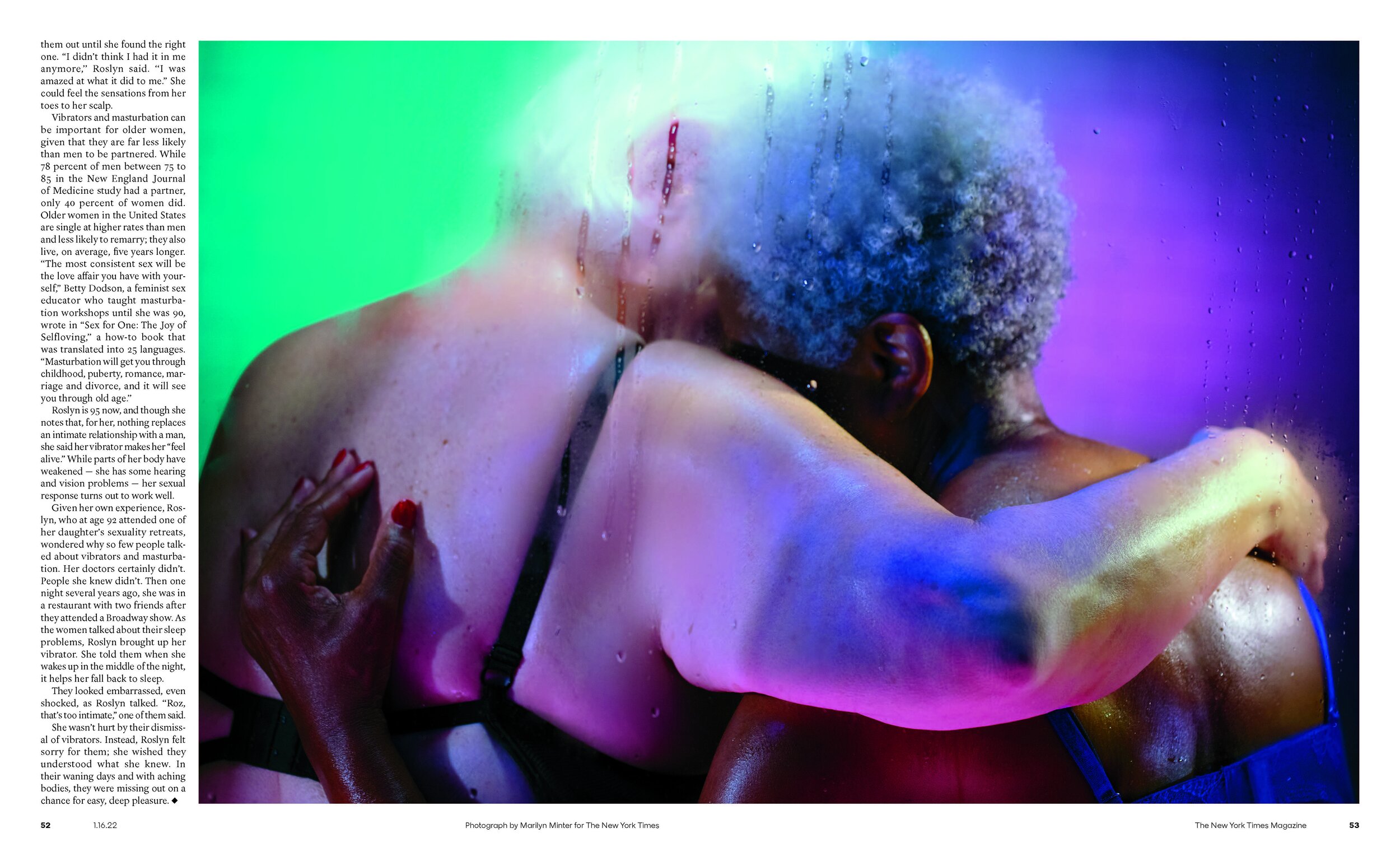
George Gendron: I’m assuming that you must be willing to take certain kinds of risks with your cover. Can you think of a recent one where you and your team felt, “Okay, this is a risk, but this is a risk worth taking”?
Kathy Ryan: Yes. And you have to take risks, otherwise you won’t do something memorable, right? So often it’s when you take a risk that you make something that’s memorable.
I would say this year when we commissioned Marilyn Minter to do our cover story on sex after 70, there was a risk in that. And it was exciting. It was thrilling. Who knows what’s going to happen? Anytime you assign an artist—somebody like Marilyn Minter, who spends her time making her own artwork, marching to her own beat, coming up with her own thing she wants to do—it’s a little bit of a different thing than when you’re working with a magazine photographer who completely understands the rhythms.
But it was such a risk worth taking. Why? The subject itself is interesting. I think the headline was “The Joys and Challenges of Sex After 70.” And she’s a terrific artist who—it’s her territory. For years she’s been making work—early on feminists thought it was pornographic—but she always believed in a very liberated, free-spirited approach to sexuality and her artwork.
And I knew already from having worked with her before that she could rise to the occasion. She totally would. She’s just, she’s both the free-spirited, no-holds-barred, do-her-own-thing, artist. The rebel, as it were. And she also understands The New York Times. Like, going into it, that was the feeling.
And we had a lot of fun. David Carthas was the photo editor on the project and he produced the whole thing, which basically meant casting. We worked doing the casting of the people of a certain age, which was its own challenge. And then it was a couple days in the studio in New York with Marilyn and there was a risk. Who knows? Not only are we working with this artist, we’re working with people who are semi-nude. They’re in lingerie and, on the other hand, it was a high-impact cover. And I got a kick out of it because, when you look at the comments, there were people who loved it, loved it, and people who hated it.
And that’s an interesting place to be. How often do you do that with a magazine cover? It got a strong response. That’s the best. That’s the best, right? You know that from what you were just talking about—if you can take a risk like that, but of course you have to, especially at The New York Times, you have to do it in an intelligent way.
With this subject, it seemed like we could take that kind of risk. If we’re covering an extremely important, of-the-moment political story, that’s not a moment when you’re going to go and do something artsy, highly creative, risky, right? Because there’s certain other criteria we have to meet. That the cover needs to accomplish. And journalistically it goes into a different zone. But, we’re lucky enough that sometimes, after years of doing this, I have a sense of where there’s some latitude. And obviously, working with Jake and Gail and the team, Is this one where we can do something fun?
Every year we do a voyages photo issue, usually in the fall. And this year the theme for it was animals. And it was an idea that Amy Kellner, one of our picture editors had. She had been pitching doing animals for years.
And this was the year it got the green light. And this is always, for us, particularly exciting because the photo team gets to drive it to a large extent. And we started figuring out ideas along with story editors.
And one of the ideas that Sam Anderson, one of the writers, pitched was the Icelandic ponies. They have these funny small horses in Iceland that people love, and so that was one of the five or six photo essays that we commissioned. And I was thinking right away, Okay, if we’re going to do animals, we have to do something different.
“It all starts with somebody having the ability to compose the chaos of the world within the frame, the ability to see light. Because photography is always about light.”
So brainstorming with Amy, she said something like, “Maybe we should show them like they’re, like, My Little Pony Rainbow Ponies.” I was like, “Yes!” And then I thought of Gareth McConnell. A brilliant Irish photographer who does these fabulous—his pictures have an “otherness.” They breathe and shimmer with something else. Like he’s often doing still lives of flowers, his own personal work. They’re magnificent and there’s a shimmer to it, and the color comes out of darkness. Anyway, I could just imagine if we took him to those horses, he would do something magical.
In other words, it’s a way of saying his vision sees the magical and transcendent in the world. And we lined it all up. Rory Walsh on our staff and Jessica Dimson found the best horses in Iceland, worked the access to that, and then we worked with them to black out the whole stable.
So anyway, Gareth did brilliant pictures and one of his photos was ultimately the cover. And it was this fabulous multi-colored horse, slightly out of focus, coming out of darkness. That’s when I think we’re at our best, where it’s unexpected because instead of just seeing the beautiful, natural horse, we had a wonderful back and forth. And I just felt like, “Hey, this is a chance we can transform it into something.” So we love to do that, if we can.
George Gendron: It’s interesting listening to you talk because one of the things that people have said about the magazine, and you in particular, is that you seem to challenge the boundary between photojournalism and fine art in a way that I’m not sure magazines have very often.
Kathy Ryan: I think that’s right. It was something I picked up on early in my career. And I got very excited by that because it allows the magazine to look different, to do something unexpected. Artists sometimes tap into something. In portraiture, it’s an undercurrent of what somebody’s psychological being is. They sometimes have what I think of as a sixth sense, as do, sometimes, photojournalists.
Like sometimes an artist has developed a universe of imagery that works for us. And that’s what’s fun about it. Just knowing that. And then sometimes you can do the reverse, where you take someone pure documentary—years ago, I had Paolo Pellegrin do the Great Performers portfolio, all documentary, behind the scenes with the actors.
And that was just great because he would not normally be doing that. So he goes in there with a whole other frame of reference. The tricky thing is there’s certain stories that it works. Like you would not do that with a major conflict story obviously, or a major issue-oriented story.
Those are the moments when we would be talking about something entirely different where you have to work with seasoned pros, who know how to navigate that kind of heart-wrenching, difficult, dangerous story and make quick decisions in the field, and obviously, have vision. It all starts with somebody having the ability to compose the chaos of the world within the frame. The ability to see light. Because photography is always about light.
The Voyages Issue: Iceland Photographs by Gareth McConnell

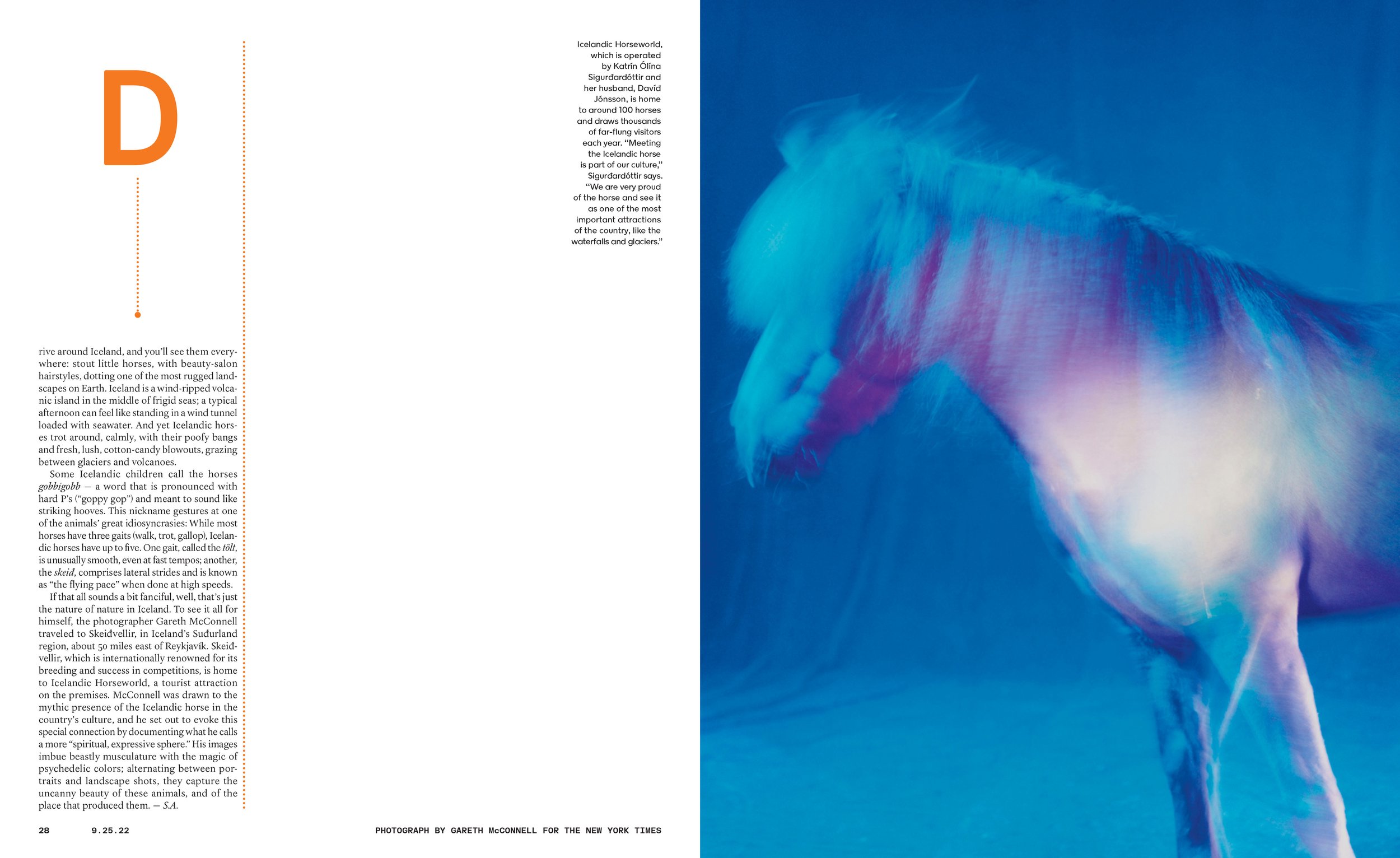
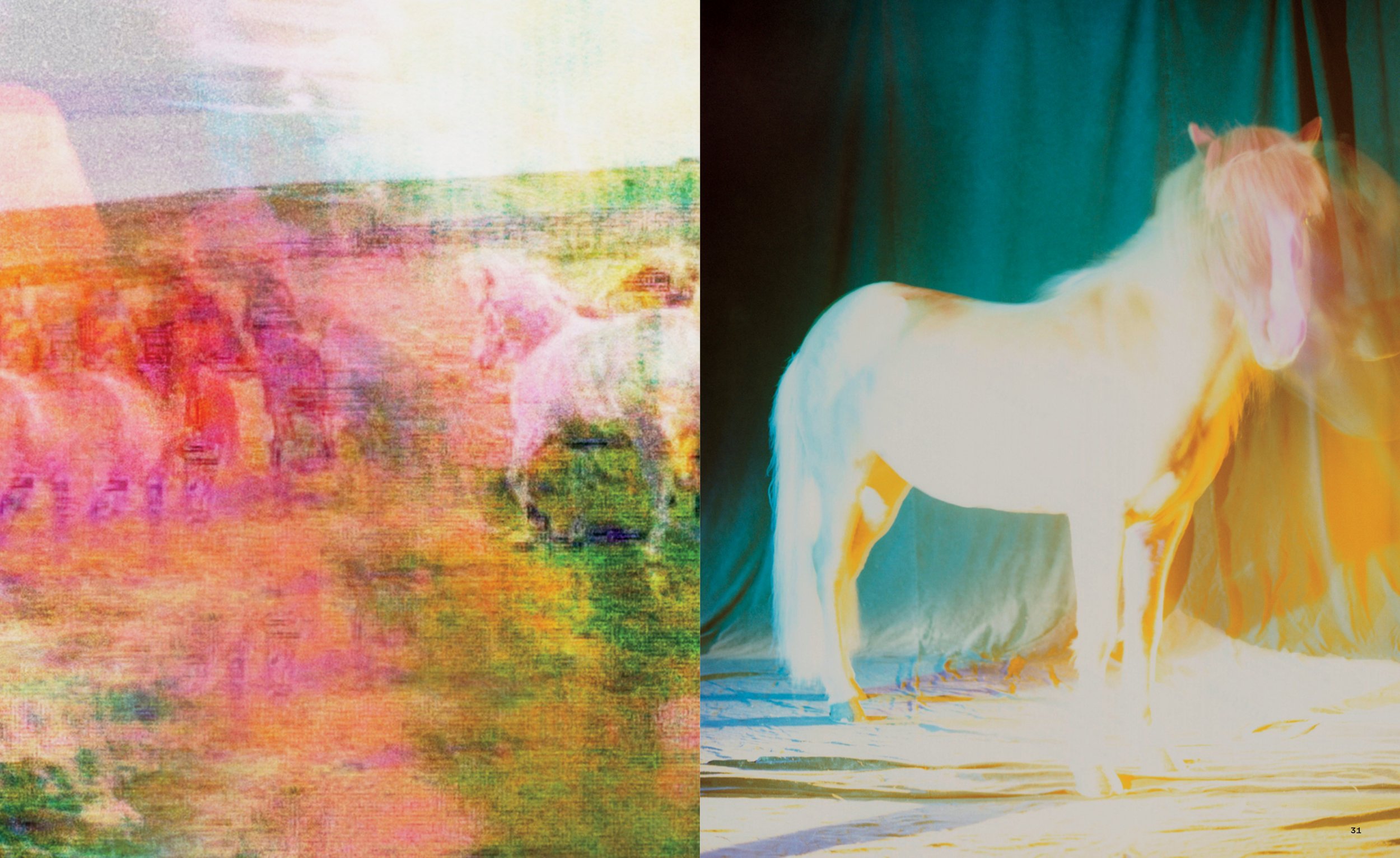
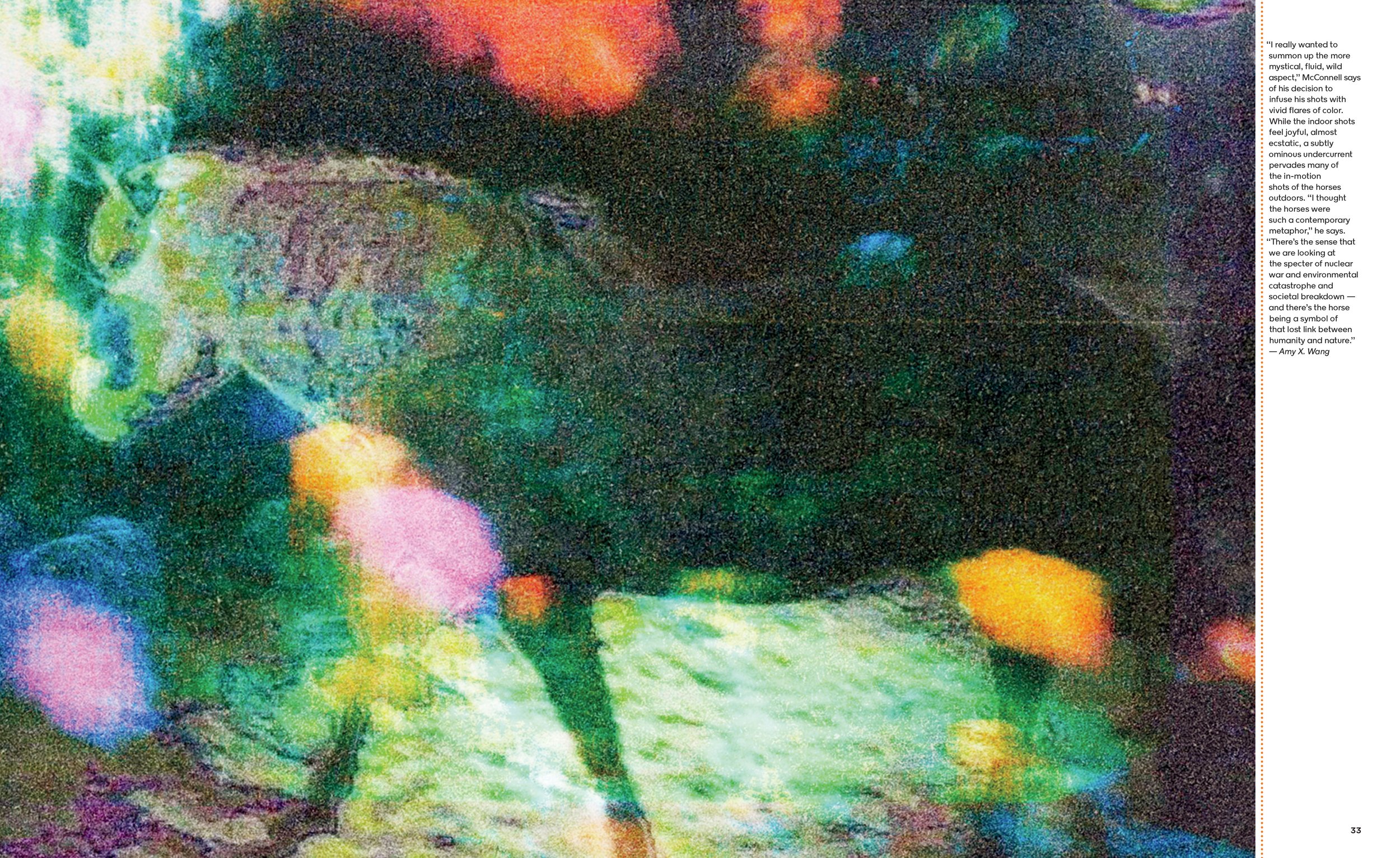
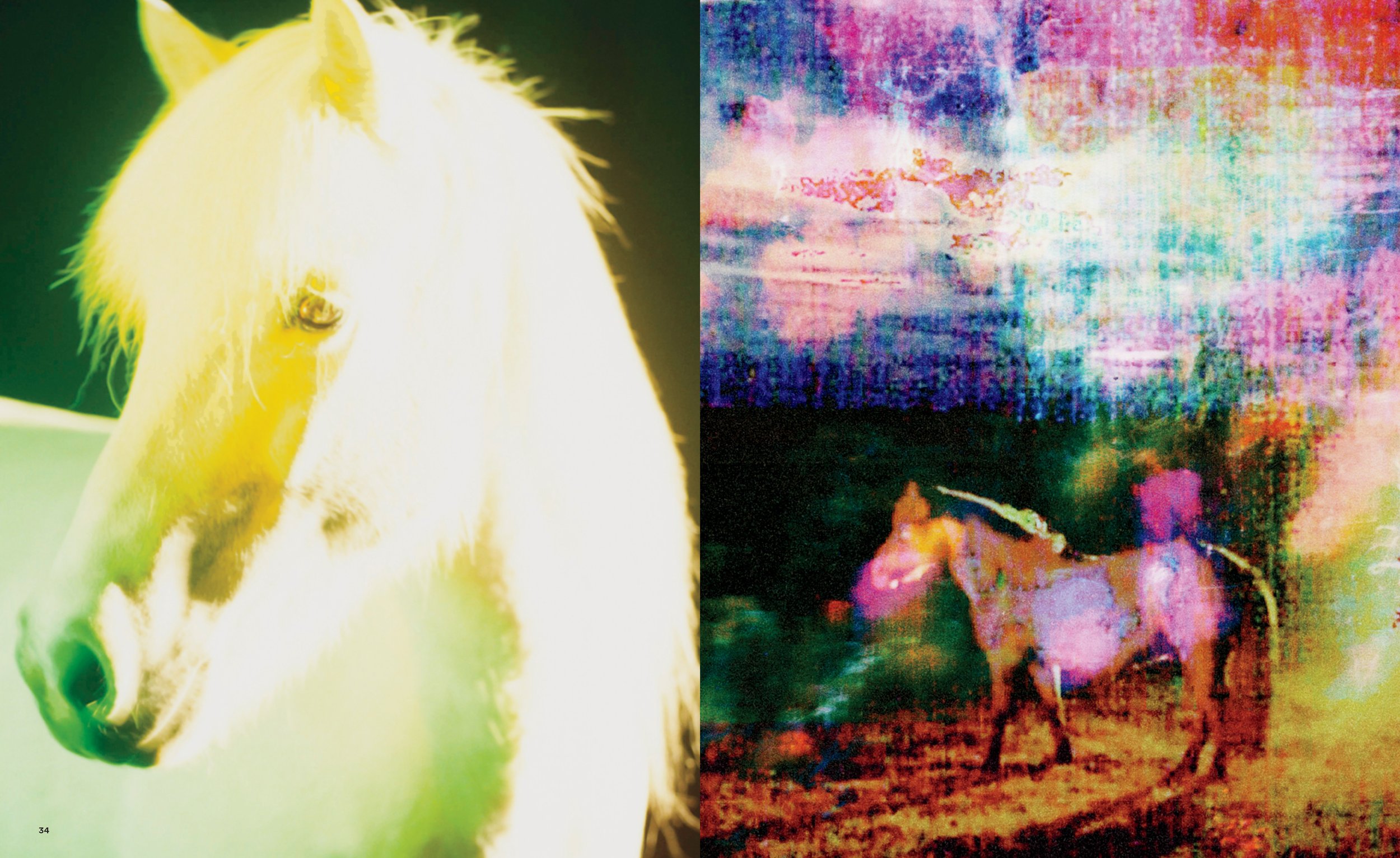
George Gendron: I do have a question that builds right off of what you were just saying, and in fact, I was going to use Paolo as one of several examples. It’s the old Susan Sontag question. There’s work that he’s done—I think in his case it was particularly about immigrants—and work Gary Knight did during the early stages of the Iraq war. And the photos, when you saw them, were beautiful. They looked “renaissance” to use an Adam Moss adverb there. And so much so that—do you know Geoff Dyer, the British writer?
Kathy Ryan: Yes. I met him, but I don’t know him. No.
George Gendron: So in his book, See/Saw, he actually has a little mini-entry about conflict photography, and, under certain circumstances, its relationship with Renaissance painting. And he uses one of Knight’s photos, that can also be very wrenching, of a marine battalion, after one of the Marines has been killed in a mortar attack, as an example of this. And composition and lighting and tone. And so I’m curious about how you personally, as a director of photography, deal with that, because you’ve got these photographers who are just absolutely brilliant, and yet they are covering the horror of war, conflict, revolution. Now of course, the Ukraine invasion.
Kathy Ryan: Yep. Yep. It’s the hardest part of the job. And honestly, it’s harder as I get older. Somehow when I was younger and sending people into the field, of course I worried. Just the risk of it. I don’t actually even after all these years of working with Paolo Pellegrin—20 years we’ve worked together on many stories.
Working with Lynsey Addario. She’s extraordinary. She’s the most courageous person imaginable. She’s just unbelievable. I still don’t quite understand that level of courage, other than they’re driven. They’re both so driven, as are many other great photographers.
So if I can have the inner dialogue with myself that they have to do it, I would never call someone who’s never gone to cover that kind of story and say, “Hey, would you go do this?” I want to know somebody’s made that decision already. So Lynsey’s going to do it anyway. Paolo’s going to do it anyway.
It’s the title of her book, It’s What I Do. I can’t quite fathom it even after all this time. And then all the visual decision making that goes on as chaos is unfolding in front of them. When you speak about “Renaissance-esque,” there’s a picture Lynsey made years ago in Afghanistan on assignment for us, where she was on a patrol with the American soldiers and they were ambushed and one of them, Sergeant Rougle, was killed.
And the picture she made of his comrades, his friends who are just grief-stricken—it’s just happened—are taking his body down the muddy slope there. And she somehow gets into position. It looks like a religious painting. And she doesn’t think like that.
Lynsey’s not someone who’s, I think I can fairly say this, looking at classical art constantly to let that inform her thinking. It just came naturally in the way, I think, a great visual person sees. She’s more of a narrative storyteller. But it’s a haunting picture that went to that next level. It became something else.
And then Paolo—I’m not trying to compare, we're just talking about different approaches—overwhelmingly shoots in black and white. That right there is an abstraction. He has chosen that because black and white emphasizes emotion, eliminating unnecessary color. It gives him more of a chance to focus on composition. Composition becomes more important. And light.
Lynsey has consciously chosen in her career to photograph in color. And in her case, she doesn’t want the abstraction. And I don’t want to make sweeping statements for either of them, but I know them well enough. She wants to see all the reality that color gives you.
George Gendron: But then there’s also the issue for the director of photography about managing a certain tension between the aesthetics of a photo and the fact that the content of the photo is, in fact, conflict. Death and casualty. That’s got to be challenging.
Kathy Ryan: And it’s uncomfortable to talk about because with that kind of coverage the content rules. But still if you want to make a memorable picture, especially today with the abundance of imagery out there, you have to make something that is so well seen, so well composed or understood or framed, that it touches some other nerve. That stops people—making a haunting image. The aesthetics do matter.
“Photojournalists have to be opinionated. They have to take a stand. There has to be something that they care deeply about. And you have to have the courage to go for it.”
George Gendron: That gets into a question that someone who has had the arc of your career—you joined The New York Times in the late ’80s—and so you’ve done your job in an analog world and now you’re doing your job in a digital world. And it must be dramatically different as you try to conceptualize the visual solution to a story. When we’re living in this age of just over abundance of images. My God, you can’t get away from them.
Kathy Ryan: Yeah. It’s unbelievable. I feel like today it’s become way more challenging. When I started out, you turned to magazines and papers and books for the photos. That was it. And it’s just completely different. You know?
People have seen hundreds and hundreds of pictures every day. So where is our place in that? And I wish I had answers to some of that. I find it more and more challenging. And then there’s also the reality that there’s all sorts of creative work being posted on Instagram by non-professionals, like doing some just nifty stuff.
It opened up creativity in a lot of people. They couldn’t necessarily do a commissioned magazine assignment, but I see all sorts of just interesting creative material. And it’s just a different medium.
And that’s the other thing—every year we do an annual, “The Lives They Lived” issue. It’s the last issue of the year. And we do a series of stories about people who’ve died that year. And it’s almost always people of renown—who are known in some way. Sometimes ultra-famous, sometimes not ultra-famous, but known in their field. And this year, a decision was made by Jake to devote the whole issue to children killed by guns. And the reason for that was there’s been a shift.
Within the past year or two—the highest number of child mortality is related to gun deaths. So we’re in a terrible—we all know that. And there’s been just horrendous school shootings. So as we set out to figure out the art for that and the photography, the photo editor working on it, Kristen Geisler started calling all the families, which was a challenge unto itself because, of course, they were deeply grieving.
In some cases, she’s talking to the mother or the aunt or different family members. And we normally, in that issue, come up with a nice idea of something to commission. The year before we did the shoes of the people who died. And it was terrific. We had Eric Carle, the children’s book illustrator’s, paint-splattered shoes. We had the boots that Halyna Hutchins was wearing the day she was shot on the movie set where she was accidentally shot.
And we’ve done the empty rooms left behind by the deceased. But I decided, talking with Gail and Kristen and Jake, everybody, that this was a moment to use vernacular photography. We just illustrate it with the images that the family members themselves had. Which would basically mean smartphone photography, TikTok videos.
So Kristen started pulling in all that material. We were looking at it closely. And it was very challenging. It was emotionally wrenching, as you can imagine. It was one of the most emotionally-wrenching things we’ve done. The subject matter was so sad and we wanted to do right by these kids.
George Gendron: It was emotionally wrenching for readers!
Kathy Ryan: Yes. And we knew that. People are going to be devastated by it. And that is another responsibility for us at the magazine that we discussed a lot.
And then we were also working with tiny digital files. So you also need to figure out, How will this work? Where is our cover image? And then we decided to go right into it. And Gail and Matt Curtis, who was designing the issue with her, decided to do these double-truck [two-page spread] images of the faces blown up. So we were looking at that very closely, trying to figure that out.
And then the image that ultimately was on the cover—as soon as we saw that and it was backlit, everything about it was so pure. A professional wouldn’t have shot the picture that way with the light flooding from behind. But what it did was it gave it just a spiritual look.
And as soon as I saw that one in the cover mat, I felt, “There it is!” And then of course we all came to that conclusion, but we were nervous. It was a very different type of image. But Kristen was getting in these clips from the TikTok videos that she was looking at closely with the digital team. And when we published, the power of the short video clips eclipsed the power of the still photos. And you’re not going to hear me say that often, because I’m a diehard. I mean, I love video, but still photography has such a special place. And this was a case where just seeing the little bit of movement of the child had so much power.
And of course, these pictures were all made for just the most personal, pure, intimate reasons. And the brief for them was to not focus on the death at all, but just focus on a day in the kids’ lives. Something in the kids’ lives that was just about them, alive and happy.
And today, with the new medium that we have, most of our readers, the majority, are seeing us on their phone. That was very powerful on the phone as well as in print.
Lives on the Line: Patients with High-Risk Pregnancies Photographs by Stephanie Sinclair
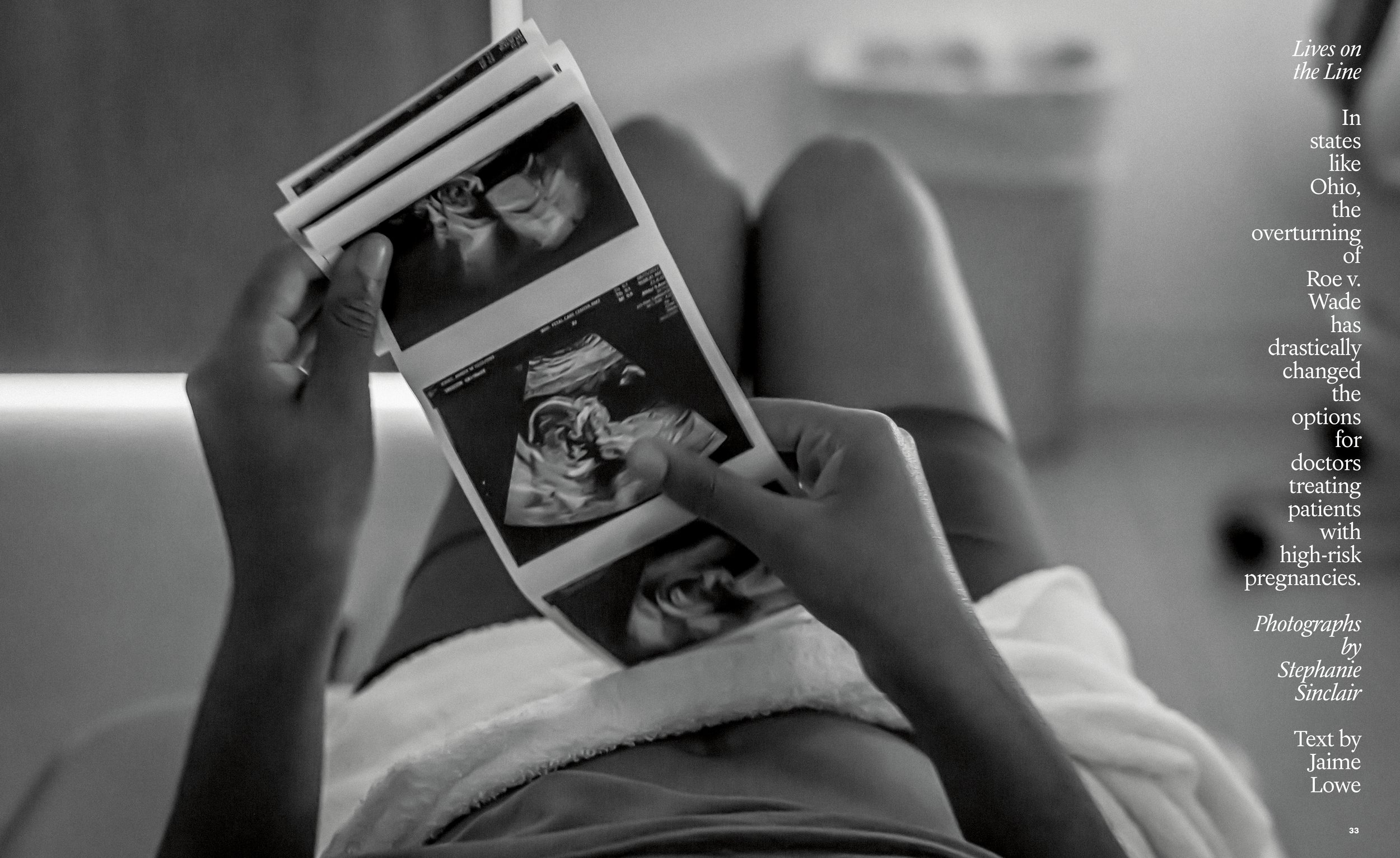
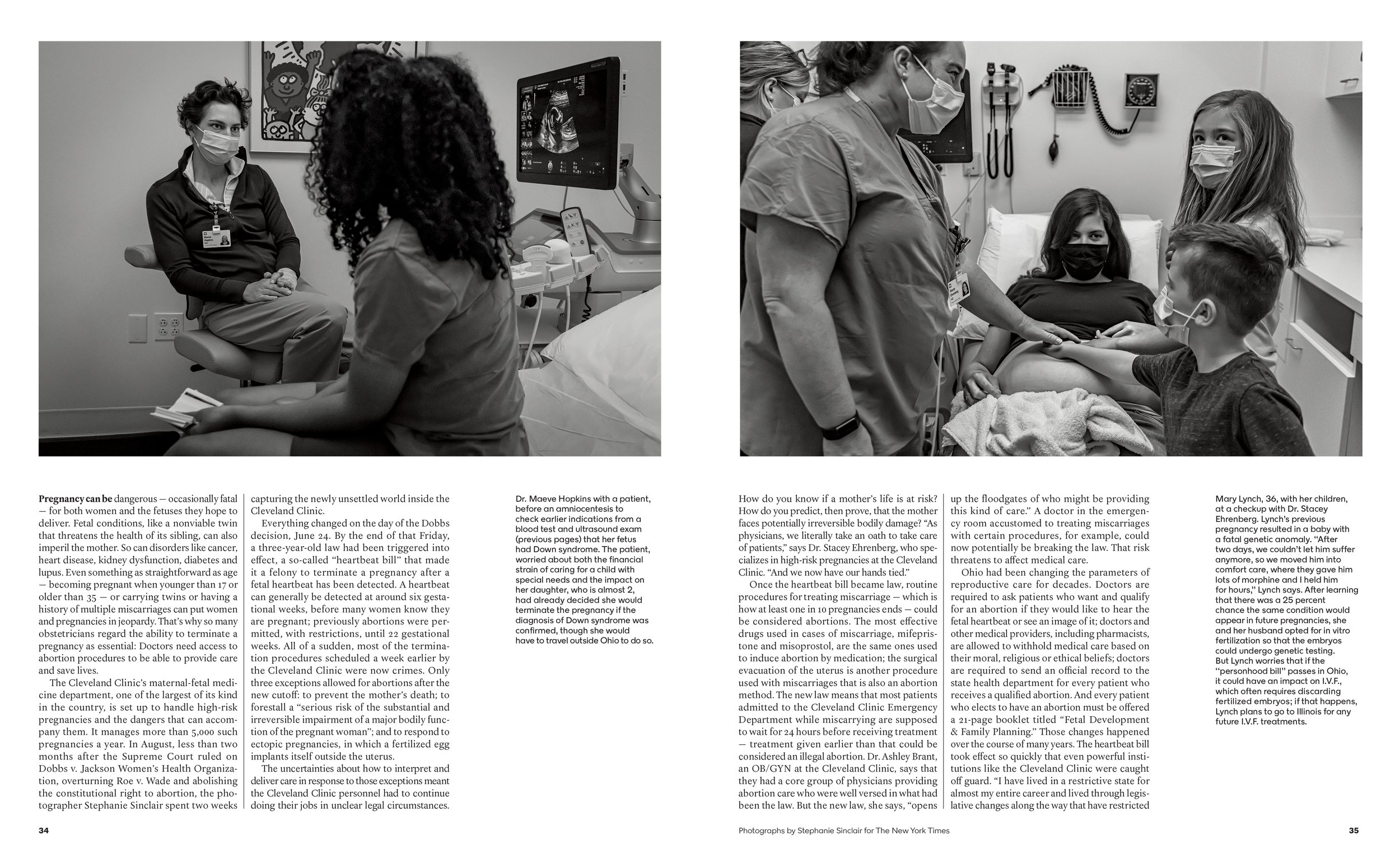
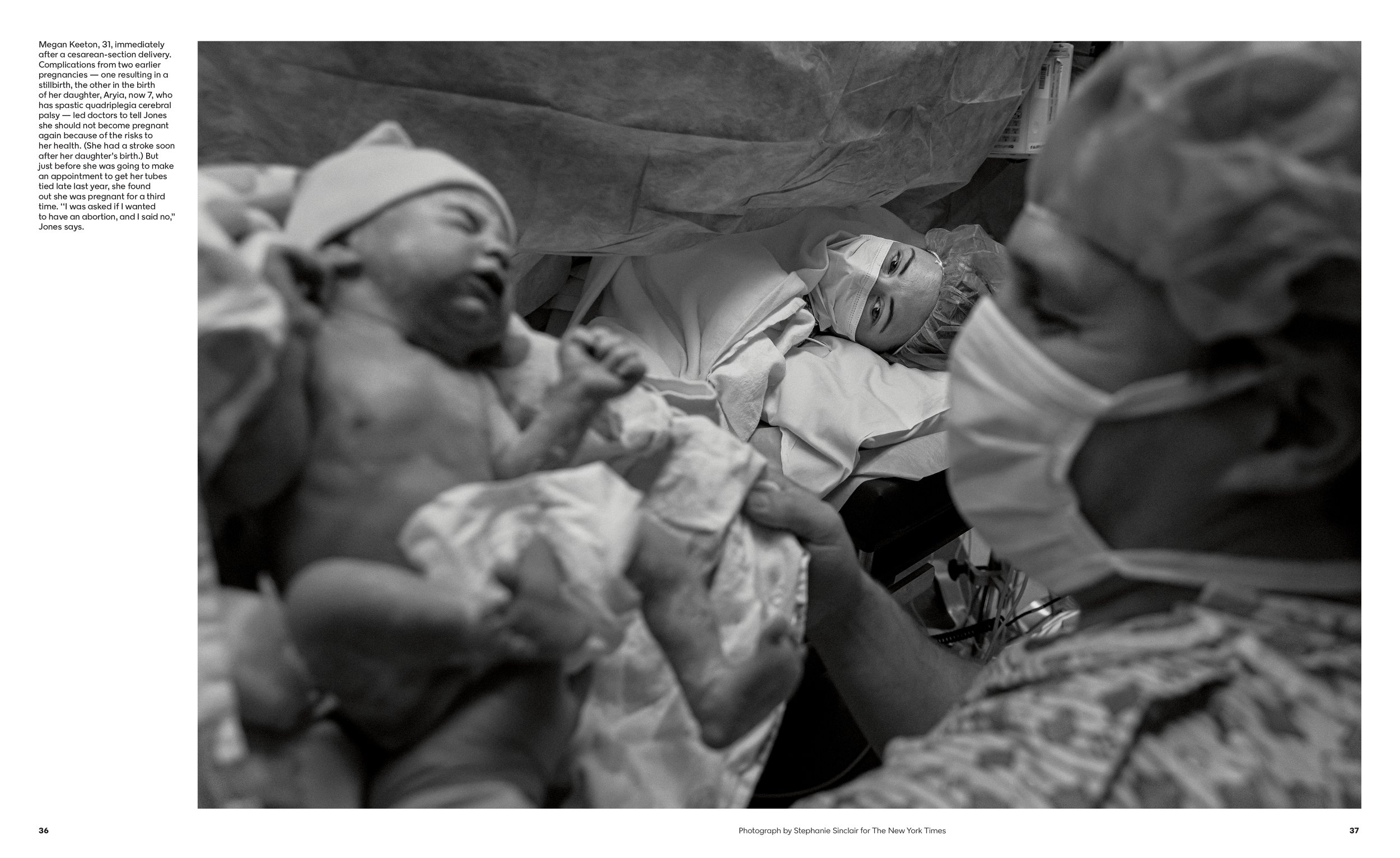
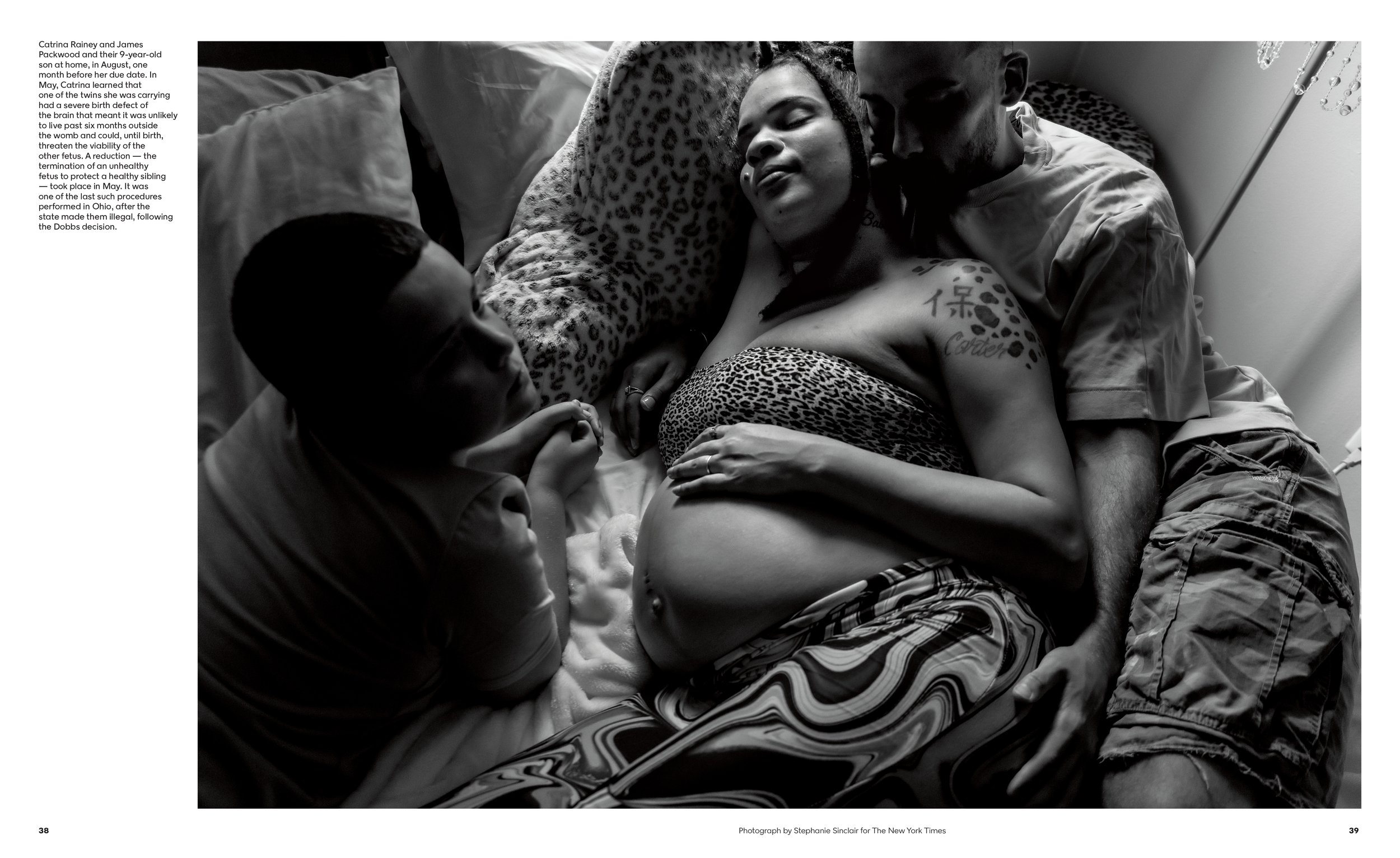

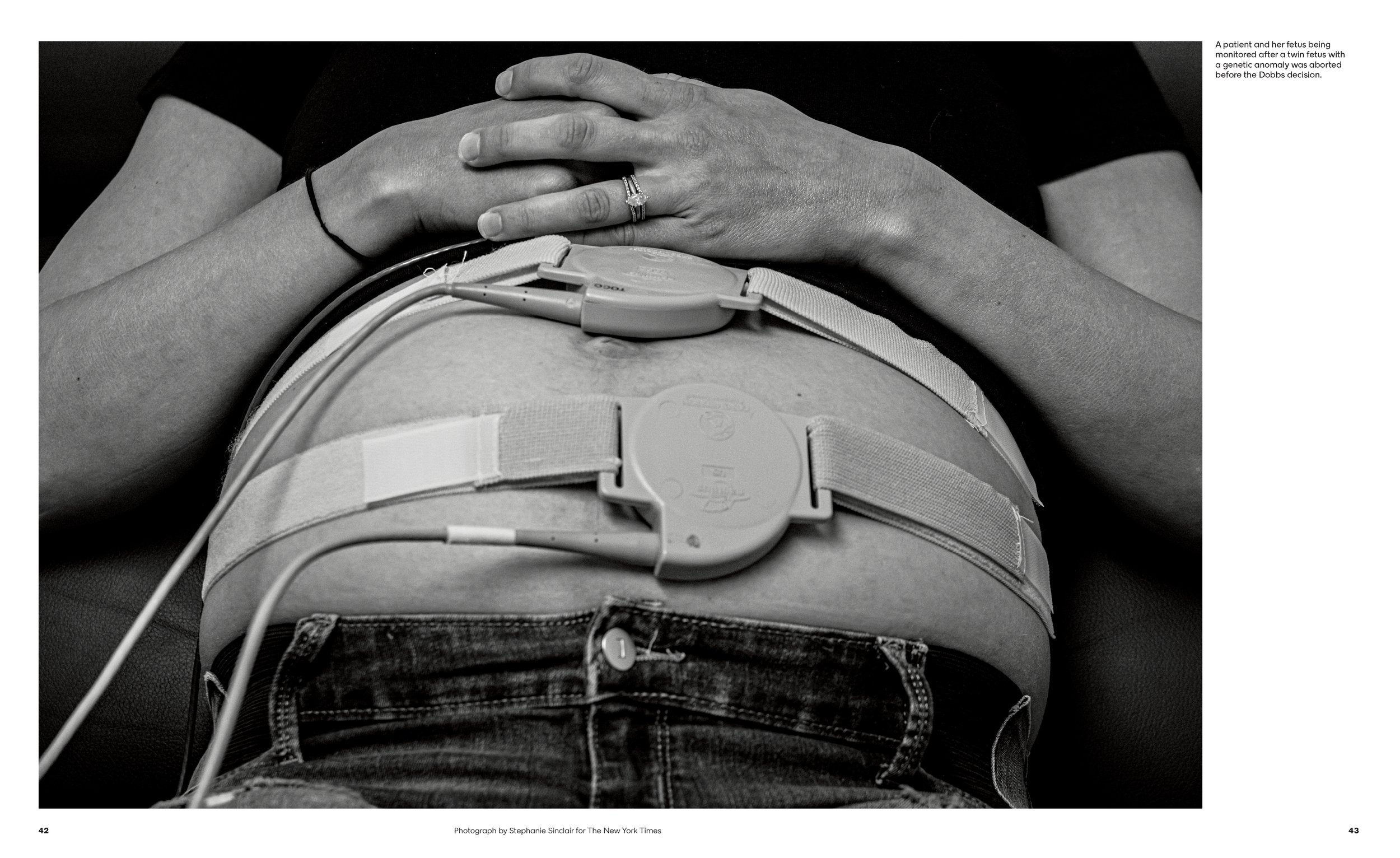
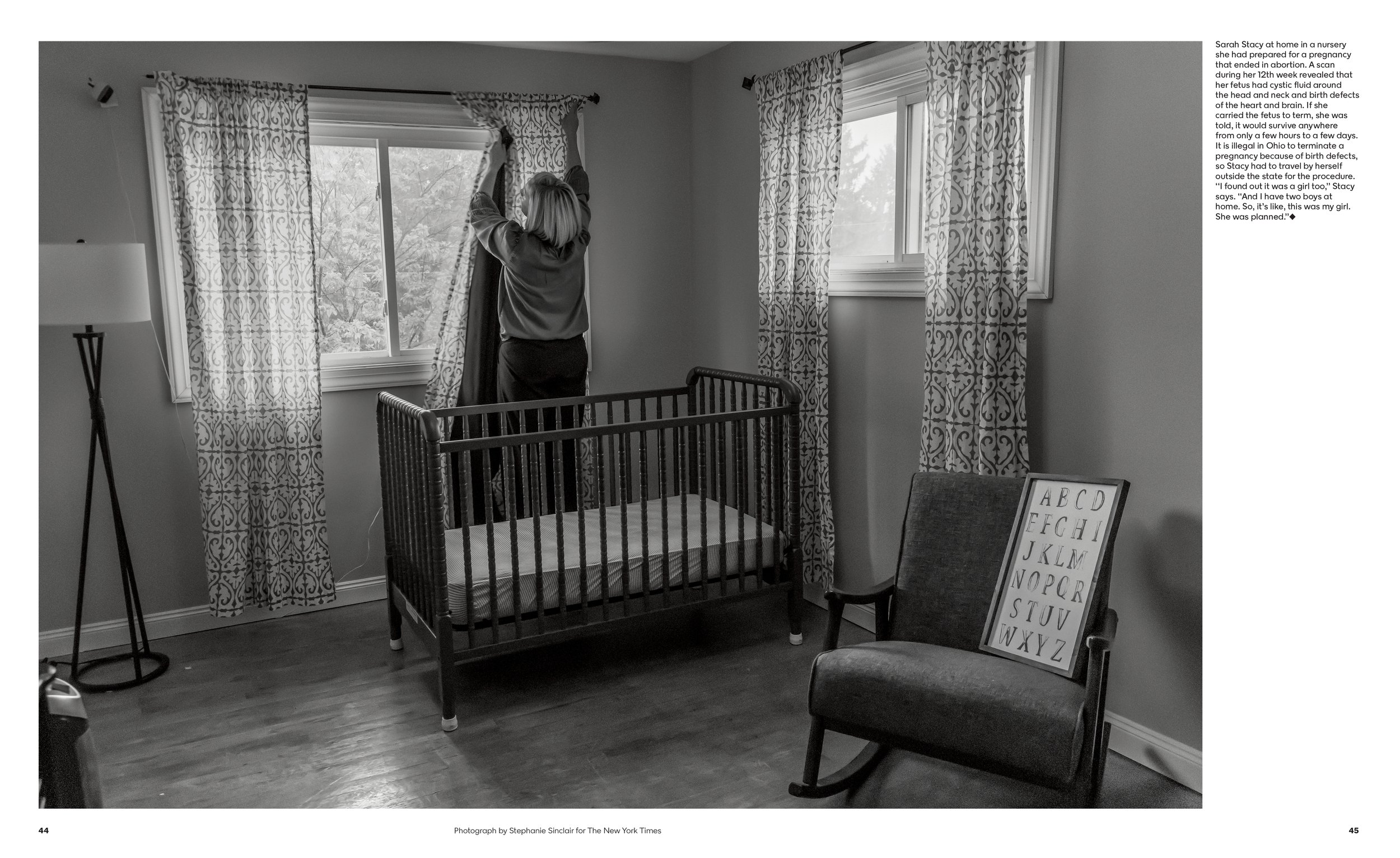
George Gendron: Let’s go back to what you just said a minute ago. It’s an interesting transition point because you were talking about your passion for the photograph. Where did that come from? What did you want to be when you were 12 years old? Did you want to be a photo editor?
Kathy Ryan: I had no idea. I always liked to draw. I was a kid that always liked doing art. And I had an older sister, a year older, and she loved to draw. And we would draw for hours on end. My parents would buy discarded rolls of wallpaper where it was a buff on the back and they’d roll it out. So we had all that blank paper to keep drawing.
Ryan in the third grade
George Gendron: Did you grow up in New Jersey? Because we did that.
Kathy Ryan: Yes!
George Gendron: Did you really?
Kathy Ryan: Yeah. Where did you grow up In New jersey?
George Gendron: Up in Bergen County. I grew up in Oradell and New Milford.
Kathy Ryan: I grew up in Bound Brook. But there’s going to be another overlap because listening to your podcast, a pivotal moment for me was third grade, which I think was the case with you, right?
George Gendron: Yes.
Kathy Ryan: And so it’s a weird coincidence. In third grade, I had a teacher—I was in Catholic school at that point—Sister Mary William, a nun, and she taught art history. This was in a very strict, classic, traditional classroom. But once a week she passed out black and white marble notebooks, and she would pass out small reproductions of paintings, famous paintings, classical artwork. And we would paste them in while she talked about what the symbolism was in the painting, what the artist might be thinking, what the expression on the person’s face and the painting was. I fell in love with it. I just felt like, “I got it.” I so got it.
George Gendron: What was the “it” that you got?
Kathy Ryan: Just understanding. Looking at the pictures. I can’t explain it. It was like, “Wow, I get it!” Whereas, I’ll be honest, in music class I just didn’t get it. I couldn’t hear the different notes. But it was like I could see it.
George Gendron: The power of the visual.
Kathy Ryan: Yeah, the visual. I could see what she was talking about when she mentioned an expression. I could see it in the face or something symbolizing something else. It just kind of clicked. So throughout early schooling I was always drawing, painting, and making art. And then at the end of high school—I had interest also in politics because the Watergate hearings were on. So I went to Rutgers, Douglass College, with an idea toward majoring in art or potentially shifting to politics.
And then very quickly I focused on art, but not photography. My college studies were painting—I did lithography, I did a lot of printmaking. But never photography. And then when I got out of school, I realized very quickly after working for hours in the studio for several months, I don’t like being alone all day. I love working with people. It’s my nature. I wanted to work with the team.
And a friend of mine told me about an opening at a photo agency. It was called Sygma. As you know, one of the big photo news agencies in that era. Sygma, Gamma, Sipa, Magnum. And they needed a librarian to file—remember this was the days of slides, negatives, prints. There were no digital images. So everything existed as a physical object. And they had photographers all over the world that would send their work to the Paris bureau where they would process it all. They had the lab there and then shipped it to us in New York.
And I got hired as a librarian. So I would just figure it out, stamp the slides, and where to file them. Then I graduated to doing photo editing for The New York Times Magazine, when they would call and say, “We’re doing a story on Iran.” And I would put together a package for them of slides and prints related to that subject.
And then ultimately, when there was an opening, I applied. They knew about working with me because in those days they used more existing photography and less commissioned. So they were often calling Sygma. And initially I was doing a lot of painting at night but the more I worked in the field, I just fell more and more in love with photography and it made sense because there’s something “realer” about photography.
Like I often love when photography, as we were saying, goes to a more abstract, playful place. But I do like real. And sometimes I laugh looking back—when I was telling you about rolling out the wallpaper and my sister Maureen and I drawing—she would always want to draw the World’s Fair. And I always wanted to draw shopping at the supermarket. Because I knew shopping at the supermarket—what it looked like when mother would take us.
I liked to draw what I saw. And I sometimes think that The New York Times is the perfect place because in documentary we’re telling real stories.
George Gendron: It all comes together right now. Everything you’ve accomplished, everything you are today, Kathy Ryan, you owe to a Catholic nun.
Kathy Ryan: No, I don’t! I know, right? It’s funny how you get influenced. I know.
George Gendron: Yeah. That’s another podcast.
Kathy Ryan: Yeah, that’s another podcast.
Talk: Celebrity interviews from David Marchese Photographs by Mamadi Doumbouya
George Gendron: You are so obviously both passionate about photography and immersed in a world of the weekly, which is just so demanding. What do you do when you’re not working? Do you go to photo shows?
Kathy Ryan: I look at a lot of art—obviously photo shows. But just in the past month or two the stuff that had a big impact on me was at the Guggenheim, where there’s an amazing double-header right now. The Alex Katz exhibition of his paintings—which is a long lifetime of paintings and you watch the trajectory—is fantastic. And so for me to go see that opens up my mind in terms of photography. And they paired it with a big show of Nick Cave’s work, which is very sculptural.
So you’ve got the minimalism of Katz, and the spareness of it. And then you’ve got the maximalism of Cave and the political underpinnings—he’s taking on a whole other world of importance in what he’s trying to say in his work. And the first show I raced to go see was the big Hopper show at the Whitney, which, of course, is a crowd pleaser.
He’s over and over and over inspiring because, what did he paint? He painted light. He painted the loneliness of humans navigating the world. And photography, again and again, even in what I do as a weekly magazine picture editor is about light. How the photographers see light and have to think about people.
And Aperture has had so many exhibitions in the past that were huge eye-openers and just deeply inspiring. The show that they did a couple years ago, Antwaun Sargent curated, and was a book, The New Black Vanguard. Brilliant, brilliant, brilliant show. And walking through that, I immediately was introduced to the work of photographers I didn’t know, and it reinforced my appreciation of others.
And one of the people in that show, Arielle Bobb-Willis, I was just blown away. Early 20s, brilliant work where she sees color like nobody else and she has the figure, the human figure moves in space in a way that is unique and different. That’s not easy to do. And even her styling of the pictures. She’s since done two different special music issues for us. So sometimes it’s directly related to my role as a photo editor at the magazine.
Six years ago, I saw a show of NYC Salt, a high school after-school photography program. And I went to their end-of-the-year exhibition and saw amazing work by a photographer named Mamadi Doumbouya—at that point, maybe barely 20 years old—and just fell in love with it. And he’s been working with us since.
When we decided to do the David Marchese Talk column, we decided let’s have one photographer, one vision. Now, sometimes, it’s illustrated because it’s geographically not possible. But we’ve had Mamadi doing it since the start. And he has a very distinctive look, uniquely his. So going to exhibits and seeing constantly there are things to be discovered and then at other times seeing the work of great legendary painters where it just reinforces the quality of your seeing
That’s what I feel like. You know how some people go to exercise? I’m not too good on the exercise count, other than walking through museums. I go to exercise my brain. So I constantly regret that I don’t work out in a different way, but I feel like I work out my eyeballs a lot.
Office Romance Photographs by Kathy Ryan


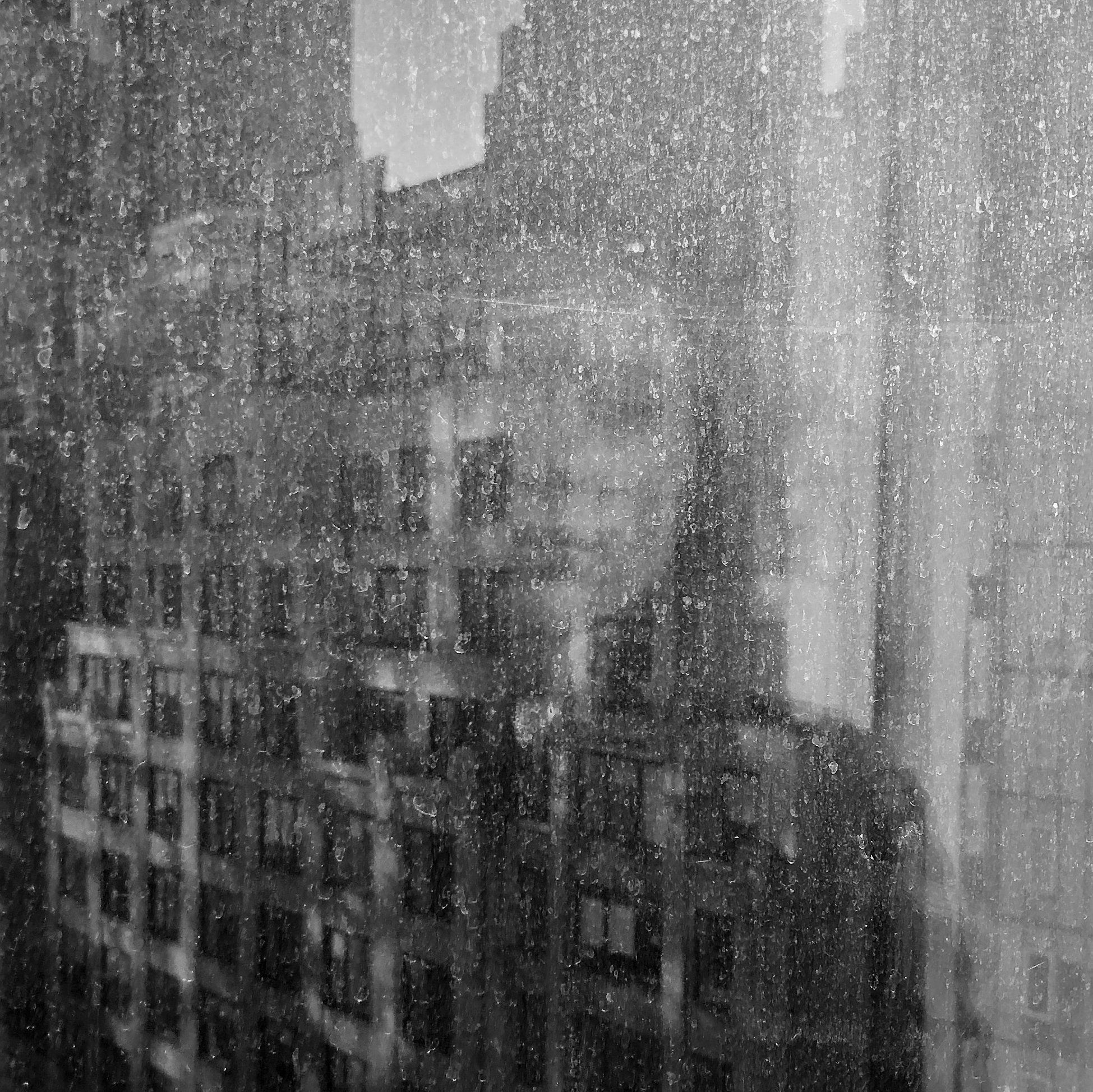
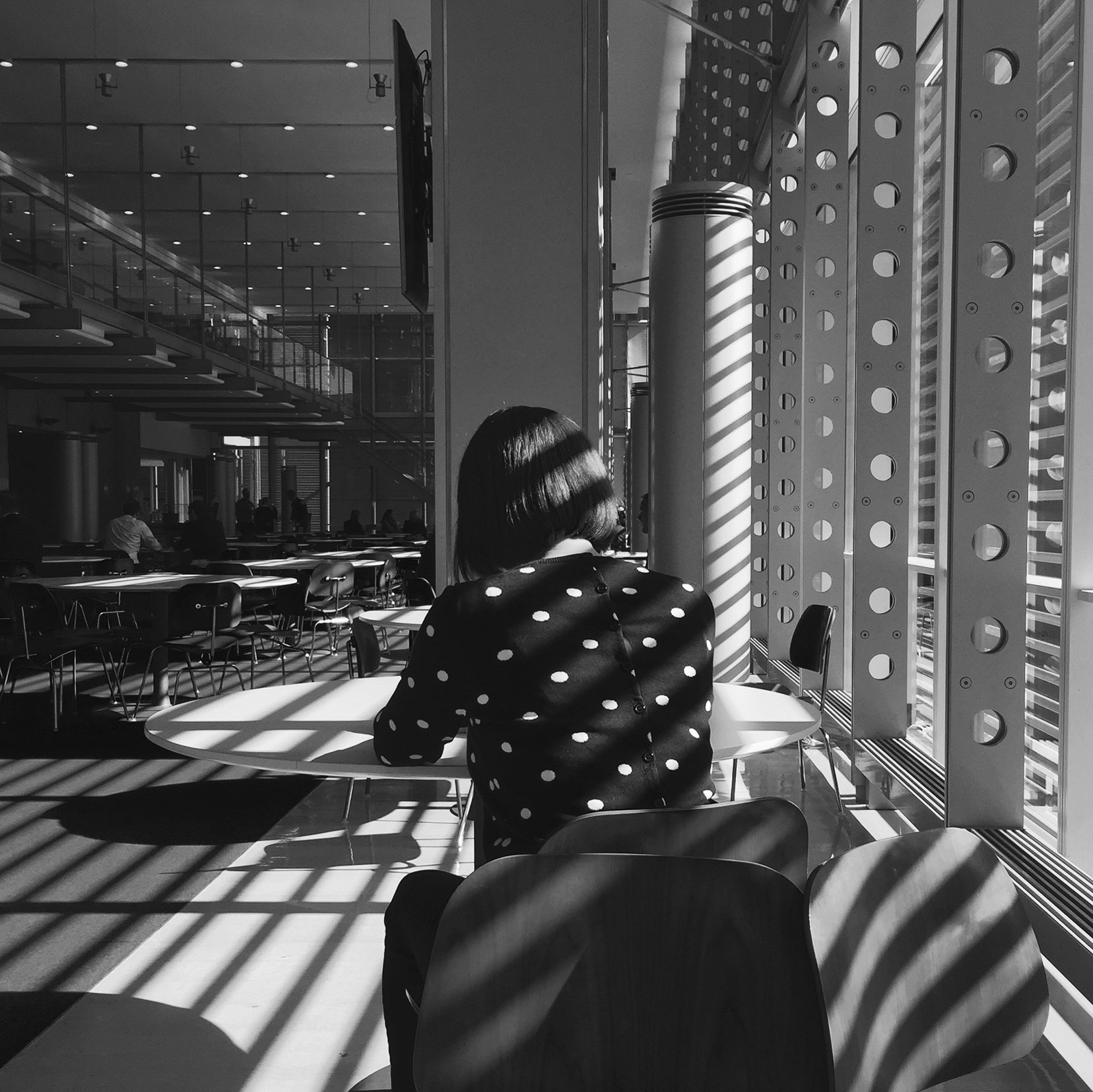







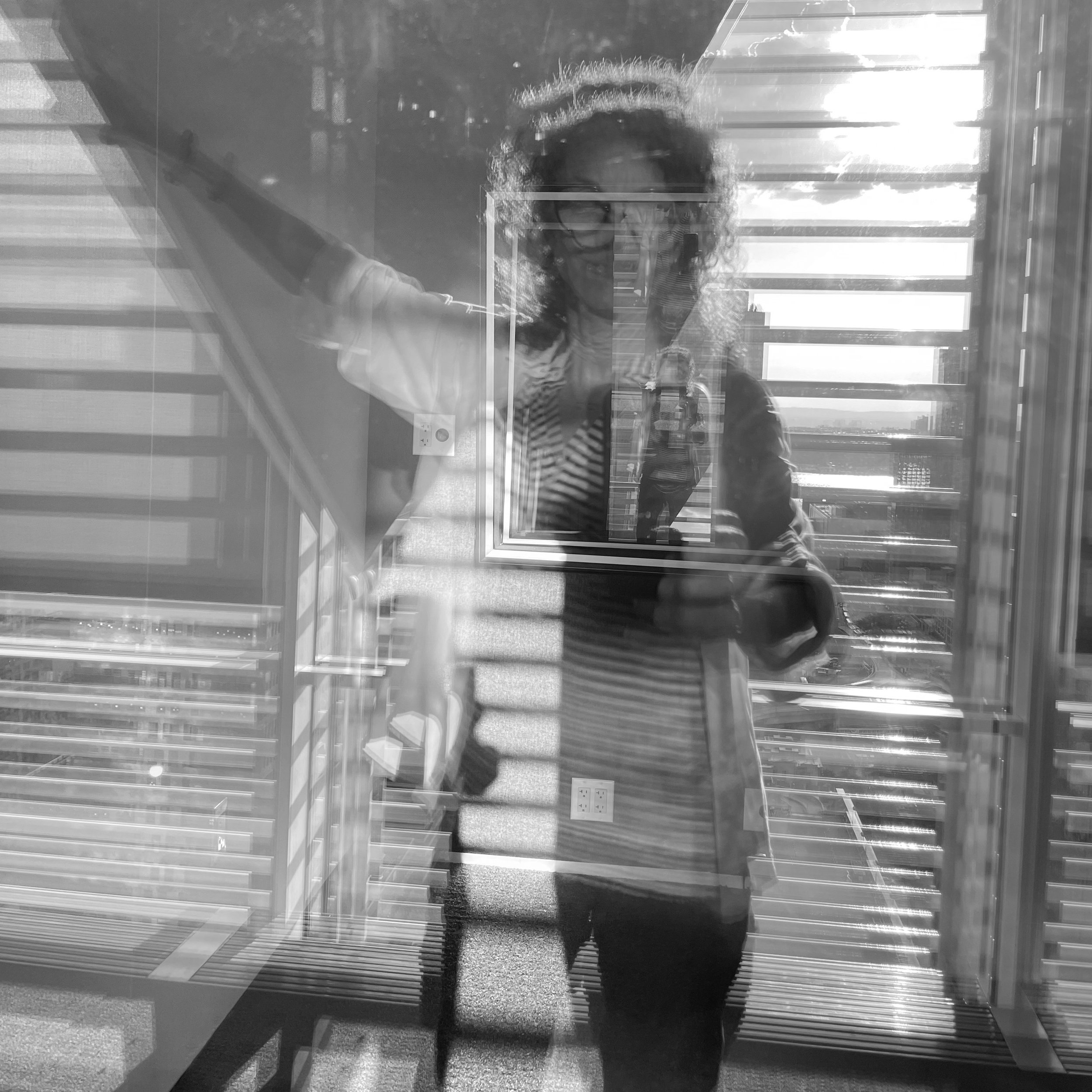

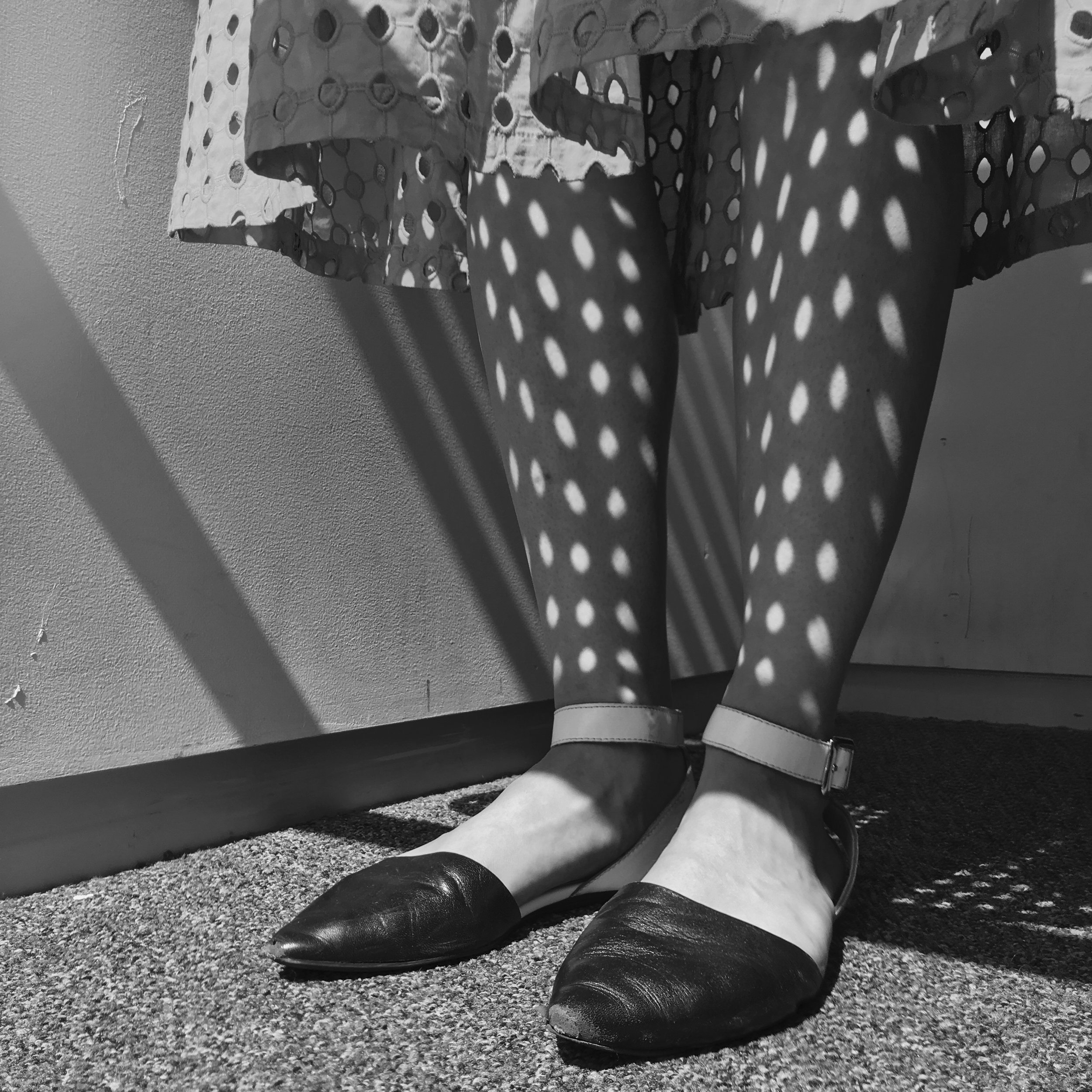


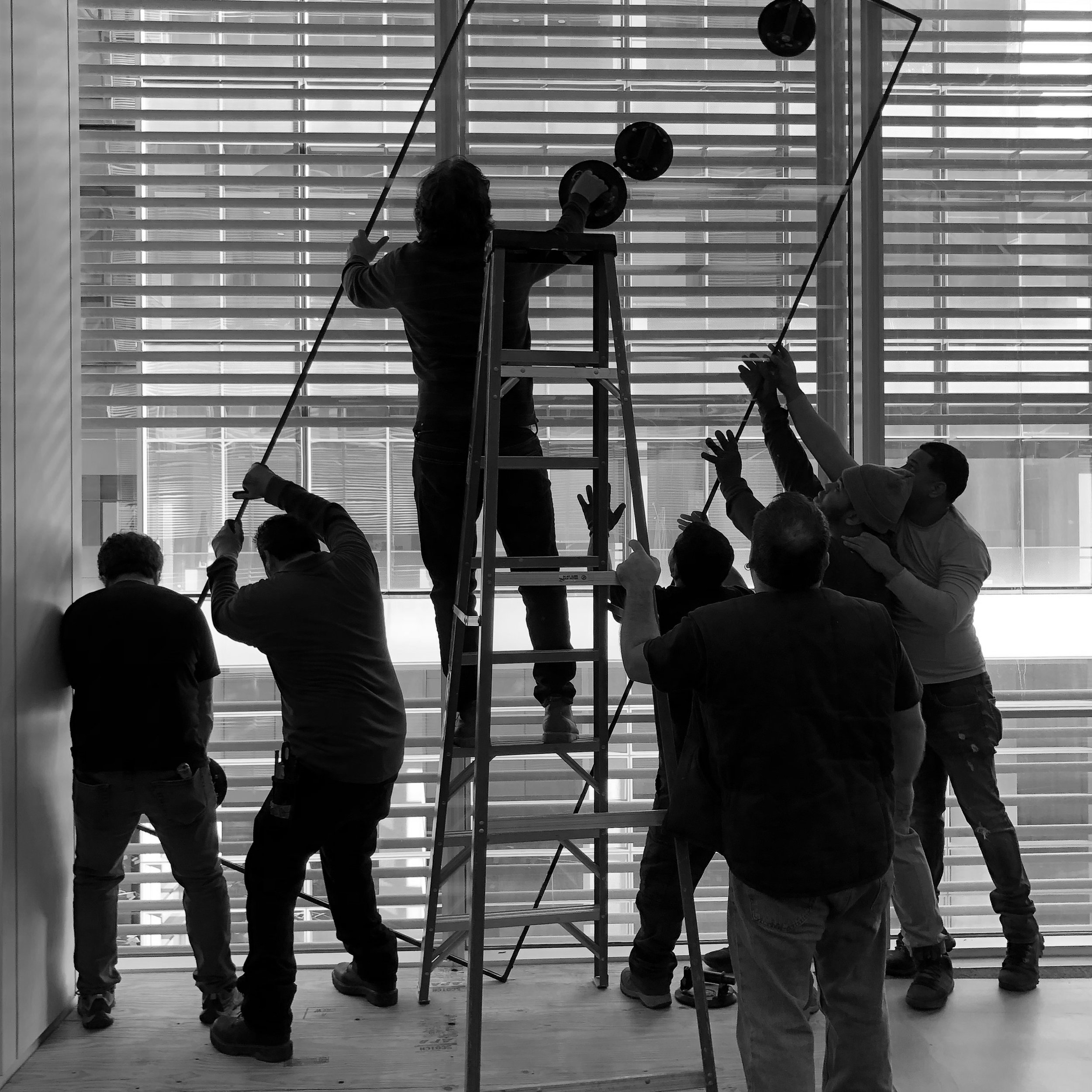
George Gendron: That’s good enough. I can identify with that. I do want to pick up on your discussion about young artists, young photographers in a minute. But before we do, selfishly, I have to get you to talk about Office Romance, your book, which I have and I love, and I know lots of other people who have it. And everybody who has it, they just love to hold it.
The form factor, first of all, is great. And it inspires people to think about looking at the world around them—their house, the light around them—in a completely different way. And I’d love to know, at what point did you stop thinking about taking pictures of the new Times offices, designed by Renzo Piano, and posting them on Instagram, and start thinking about it as a potential book. And did that change your picture taking when you started to think, “Oh, this could be a book now’?
Kathy Ryan: That’s a very good question. And yes and I’ll tell you why. I started making the pictures just for pleasure. Literally, I just, I don’t know, I saw that bolt of light on the stairs one day and—you got the phone in your pocket, right?
So it’s right there, the camera’s in your pocket. And I took it out and I made a picture and it just felt so good. And then I made another, and I made another. And I was doing them at top speed. In between, you know, magazines are a frantic, kind of frenzied place. You know, we’re constantly on deadline.
There’s something deeply—stopping for a few seconds, in the same way somebody might have gone to get a cup of coffee in a cafeteria—I would just stop, make some pictures, take one of my coworkers, colleagues with me, friends. And, I don’t know, it was like a moment of respite and almost meditative. And part of the reason why and, honestly, all the credit goes to Renzo Piano.
The building, The New York Times Building, designed by Renzo Piano, has unbelievable light. Why does it have unbelievable light? It has clear glass windows! Almost no skyscrapers that get built today have clear glass windows. They all have to meet the environmental codes. The green glass, the gray glass, you see it.
He didn’t want to put “sunglasses on the building.” He didn’t want to do that. So he came up with the idea of the horizontal white ceramic rods that sheathe the whole building. And by doing that, he managed to meet the needs in terms of heat and light. The bars cut that down so that we are within the architectural regulations. Well, it creates unbelievably cinematic light, like film-noirish light. And it just kept calling to me. It was constantly calling out to me. It was literally like a siren’s call.
I’d see the light out of the corner of my eye and it was like, “Oh my God, I’ve got to photograph that.” So it’s also often just heartbreaking because for every time I’ve been able to do it, I’ve missed a bunch just due to what I do in my job.
And then somebody introduced me to Instagram. And I just was like, “Oh my God!” So you start posting. And when we first started posting, you’d be ecstatic if you got 50 followers. “Oh my God! Do you believe this?” At first it was just our friends. Like we were in that early. The whole thing seemed magical. And then people write nice comments. And that was helpful because I don’t think I would’ve had the guts.
The New York Times Building, designed by architect Renzo Piano, opened in 2007. (Photographs by Michel Denancé)
“It was breaking my heart during the pandemic—besides all this sadness with the pandemic—that I couldn’t be up in the building for a long time. It was very hard for me.”
I know that sounds weird for me to say that, but to put them out there—but then they were getting good feedback. And then I began to realize, “Wait a minute, I’ve got a subject here.” I just thought, “I’m going to call them #officeromance.” I wasn’t planning to do it, necessarily, as a series. But then it was becoming obvious. It’s a newsworthy building. In Times Square. In New York City, the greatest city in the world. It’s The New York Times, the greatest media company in the world. I’m lucky enough to work with all these amazing people I love, who I could photograph all day long. And I can put that work out there without invading privacy. I still have issues about how many private photos people put out. I didn’t want to be doing that. Everything I’ve ever posted, the subject is happy with. And it’s not that it’s a public place.
The hardest thing—or let’s say one of the most important things—a photographer can do is find a subject that others aren’t focusing on. If you embrace a subject that’s photographed all the time, the bar gets higher. If you choose a subject that's a natural fit for photography—and photographers for eons have gone down that road—if you choose to cover the same subject, you need to do something original with it.
And I mentioned Gareth McConnell earlier. He’s doing something with flowers that feels fresh and new to me and they’re amazing. The bar gets higher. You have to come up with something different. There are certain subjects, I don't understand why they're under-covered. One of them is work.
When you think about it, most people end up retiring from their jobs, not counting people like us, magazine people, but most people, and maybe not today, now that everybody’s got a phone, but even people with phones in their pocket, they don’t have pictures of themselves at work. They don’t. And I know a lot of the Office Romance photos I do are a moment to the side of work. They’re not pure documentary. We paused for a moment. The light is hitting the person. They’re bathing in it.
It just makes me sad. My father was a carpenter and a construction worker. I have no pictures of him at work. Do you know what I’d give to see one picture of him on the job? Just to see it? And so I just liked the idea that it’s more open territory. There’s an extraordinary body of work on office life by Lars Tunbjork, the great Swedish photographer who died about five or six years ago. Extraordinary.
They’re witty, they’re funny, they’re sad, they’re poignant. They’re everything. He touches a chord. That work is incredible. But there’re not that many bodies of work in office. I don’t have to compete. There’re far better photographers out there than me. Far better. Of course, we know that.
So at least I’m just doing something fun. Like, again, it’s mostly thanks to the light. And of course Manhattan has unbelievable light because we’re between two rivers. So the light reflecting off the rivers and that gets absorbed into the Times building.
George Gendron: I think people forget that about Manhattan.
Kathy Ryan: They forget that, right? They forget just how it’s clear and it’s cold, hard, crisp, light at certain times of the year. January, February. It’s amazing. And it was breaking my heart during the pandemic, besides all this sadness with the pandemic, that I couldn’t be up in the building for a long time. It was very hard for me.
But you asked how Office Romance got to be a book. At a certain point, I started, probably like all photographers, printing them out, looking at them and thinking, “Oh, this would be a great book.” And I just wanted to do a small book.
I showed them to Chris Boot, who was the director at Aperture at the time, and I had worked with him in the past on things. And I showed it and I asked if he’d be interested, and he said, “Yes!” right then and there. And we did it quickly. It’s a small, inexpensive book and it was literally pure pleasure. There was no stress.
Now the hard part comes, as all photographers know. The more you do this, the more you are raising a bar for yourself, and now I want to do a second book. And I have enormous self-doubt. I have been working on the book—nobody's seen it except my husband and our daughter and a couple other people. But due to my magazine schedule, I only work on the book in fits and starts.
There have been certain periods where I’ve gotten foamcore boards and I put the work up, and I thought I had a book and then I backed off it. And then I’m not sure that’s the way to do it. And then I struck the boards. And for months my magazine work kept me so busy I couldn’t focus on the book even on Saturdays and Sundays—the only time I can work on it—because it’s seven days a week as a photo editor. Then I would start up again.
Anyway, I want to do Office Romance II, and I’ve got a lot of pictures. I just far more afraid of it now, and unable to—I can’t explain it—I can’t seem to decide when’s the moment that I’ve landed on the right approach.
The New York Times Magazine Photography Team Photographs by Kathy Ryan
George Gendron: I understand that. One of the things that Adam Moss and I talked about when we did our podcast, was when he announced that he was going to retire, step down from New York magazine, he said, “Look, I’ve been working full throttle.” I think that’s the phrase he used. “I need to decompress.” When I was talking to people who knew Adam, I said, “How do you think he’s decompressing?” And everybody said the same thing: “Well, he’s painting. Very badly.”
So I said that to him and he said, “Oh, that’s absolutely true. I’m a tenth-rate painter.” But he made the point that he doesn’t aspire to the same level of excellence in painting that he felt he attained in magazine work. And as a result of that he just loves the process of painting for its own sake. And I understand what you’re saying because suddenly what was—think of it as an accidental project, right? Office Romance number one: it evolves organically, you’re doing it for yourself, you’re posting it on Instagram, you have conversations back and forth, a dialogue. Suddenly it becomes a book. And now it’s a book with a capital B.
Kathy Ryan: I know. Then it’s something else.
George Gendron: And you’re a photo editor and you’re working with some of the best photographers in the world. You’d better be good.
Kathy Ryan: I hear you. But again, it was one of the joys of iPhone photography. It removed some of that burden of “it better be good.” Do I want it to be good? Of course. I work hard. You’d be amazed how many frames I’ll shoot of one thing, trying to get it exactly, precisely how I want it to look.
George Gendron: I know what you mean though. You’re not running around with a Hasselblad.
Kathy Ryan: Yeah. But then, I don’t know, it's just, there was something so informal about it. I was never afraid of putting them out there. I can’t explain it. I just posted them, and if you like them, great. If you don’t—it removes a little bit of that pressure. So I was able to organically go into it in a kind of fearless way. This is just fun, and I love this building. I love the people I work with. And I’m grateful.
At one point after I’ve been doing Office Romance for quite a while, and even after the book was published, Jake said to me—we were undergoing a bit of a redesign—he said “I want to do something different on the contributors page. I’d like to have a portrait of a contributor each week.” It’s usually a writer, sometimes a photographer, sometimes an illustrator. And he said, “I’d like you to do it in the Office Romance style.” And first I was like, “Jake, you’re crazy because that’s now an assignment!” Like I just thought, “Oh, that’s the craziest idea ever.” I was terrified of that. And I’m like, “I don’t know if I can rise to that occasion.”
But I took the challenge and it was great. I loved it. I got to meet writers I might not meet in person otherwise. It also taught me, as a photo editor, I understand the photographic process so much more now having done that. What happens between photographer and subject. The role of power. The photographer versus the subject. The importance of eye contact. Now that I do the contributor photos, it opened up my mind and really taught me a couple things that have helped in the assigning.
So I was grateful to Jake. It was a gigantic new challenge. And trying to cram that in with everything I was doing. And I’m grateful now I have those pictures. That’s the other thing in photography, if you put the energy in it, then you have the pictures.
The Culture Issue, featuring Cate Blanchett Photographs by Jack Davison
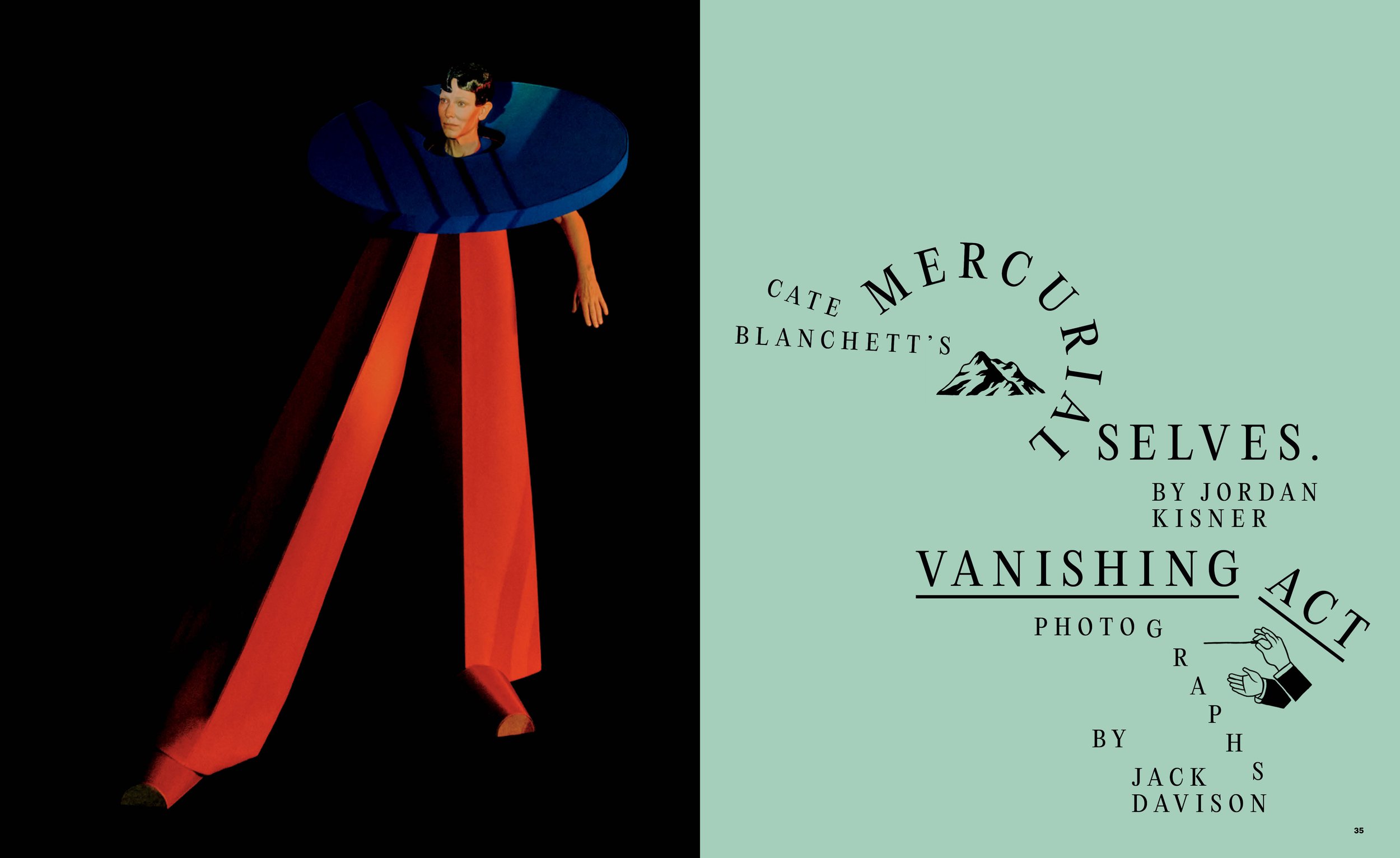
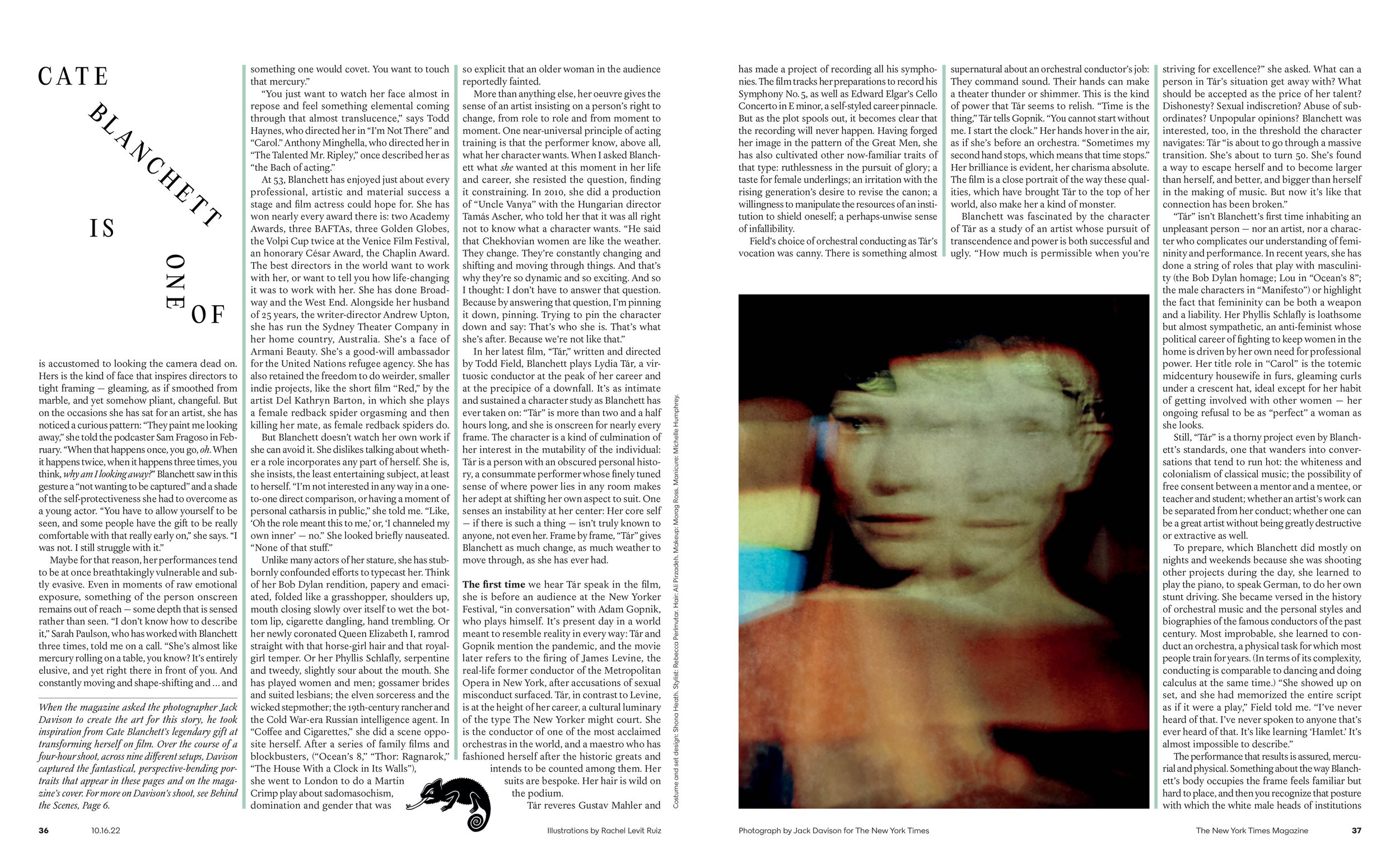
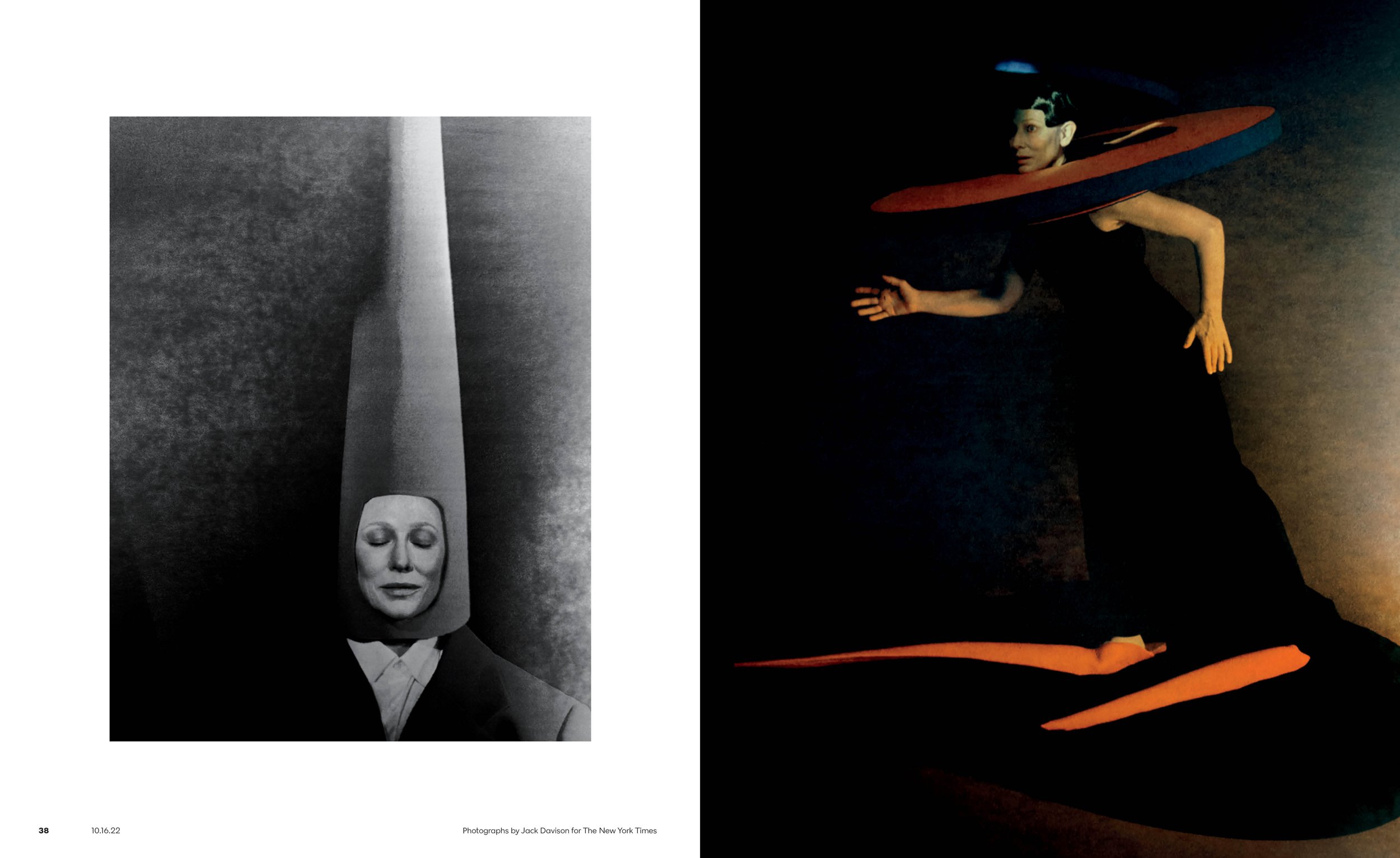
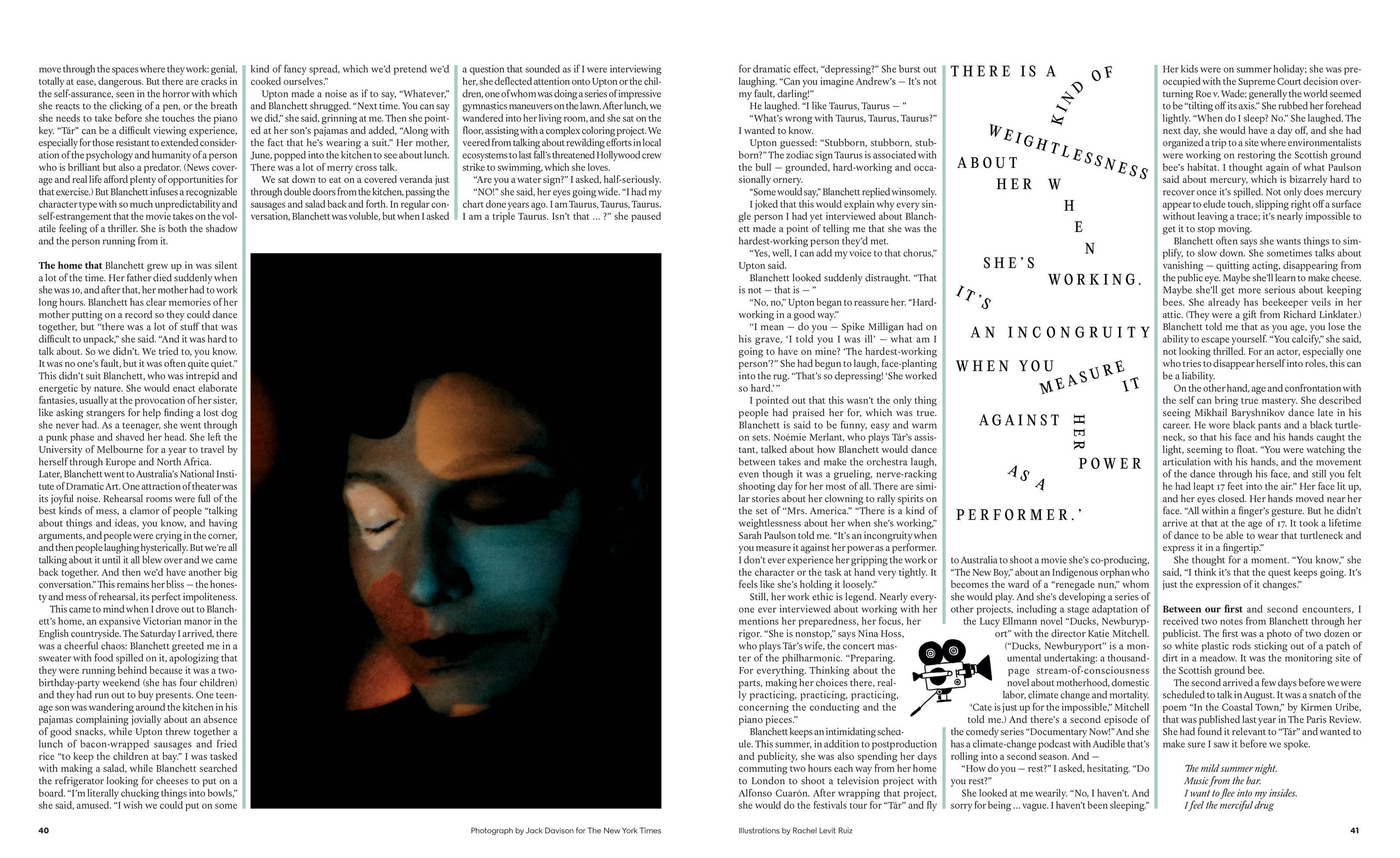
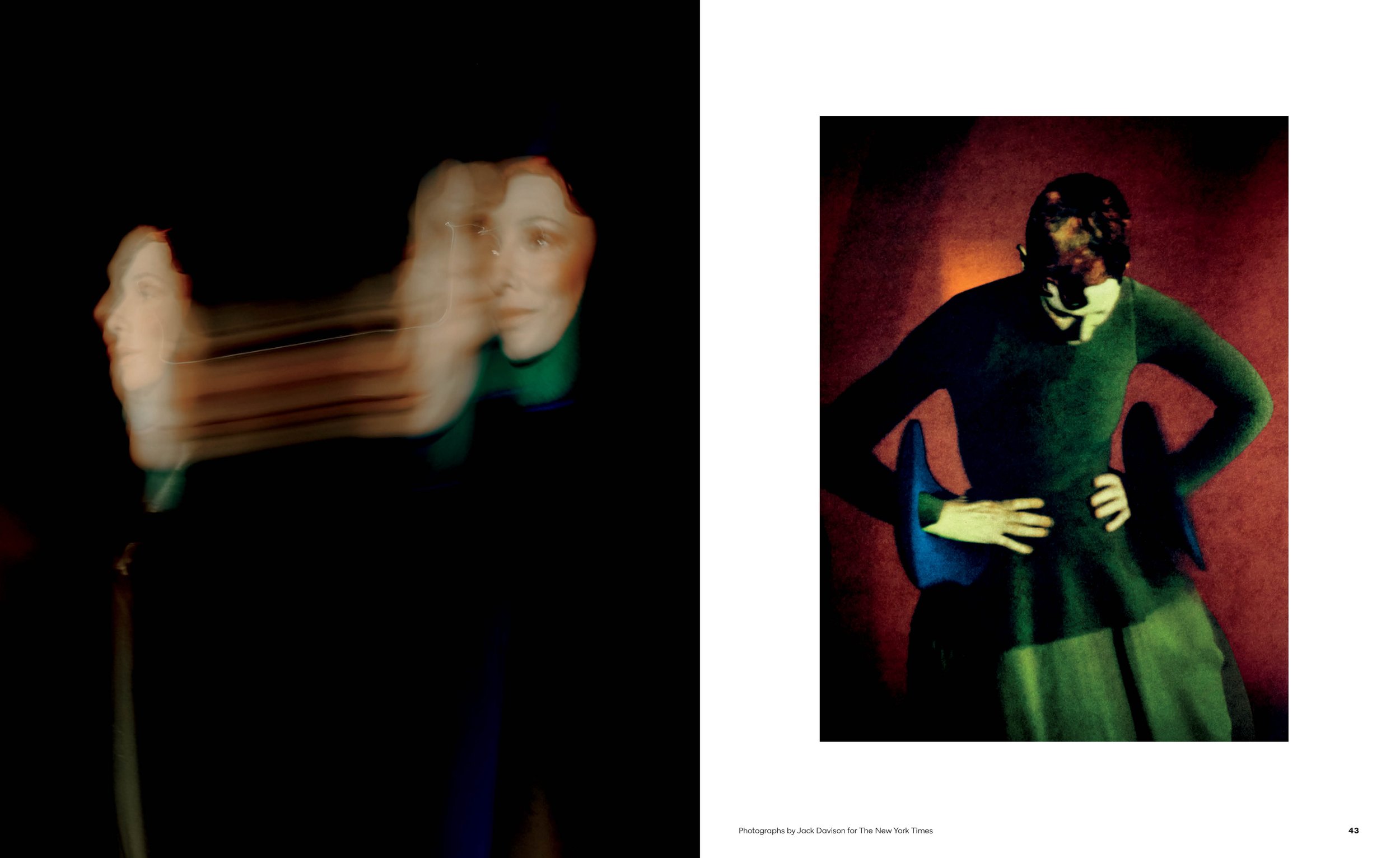
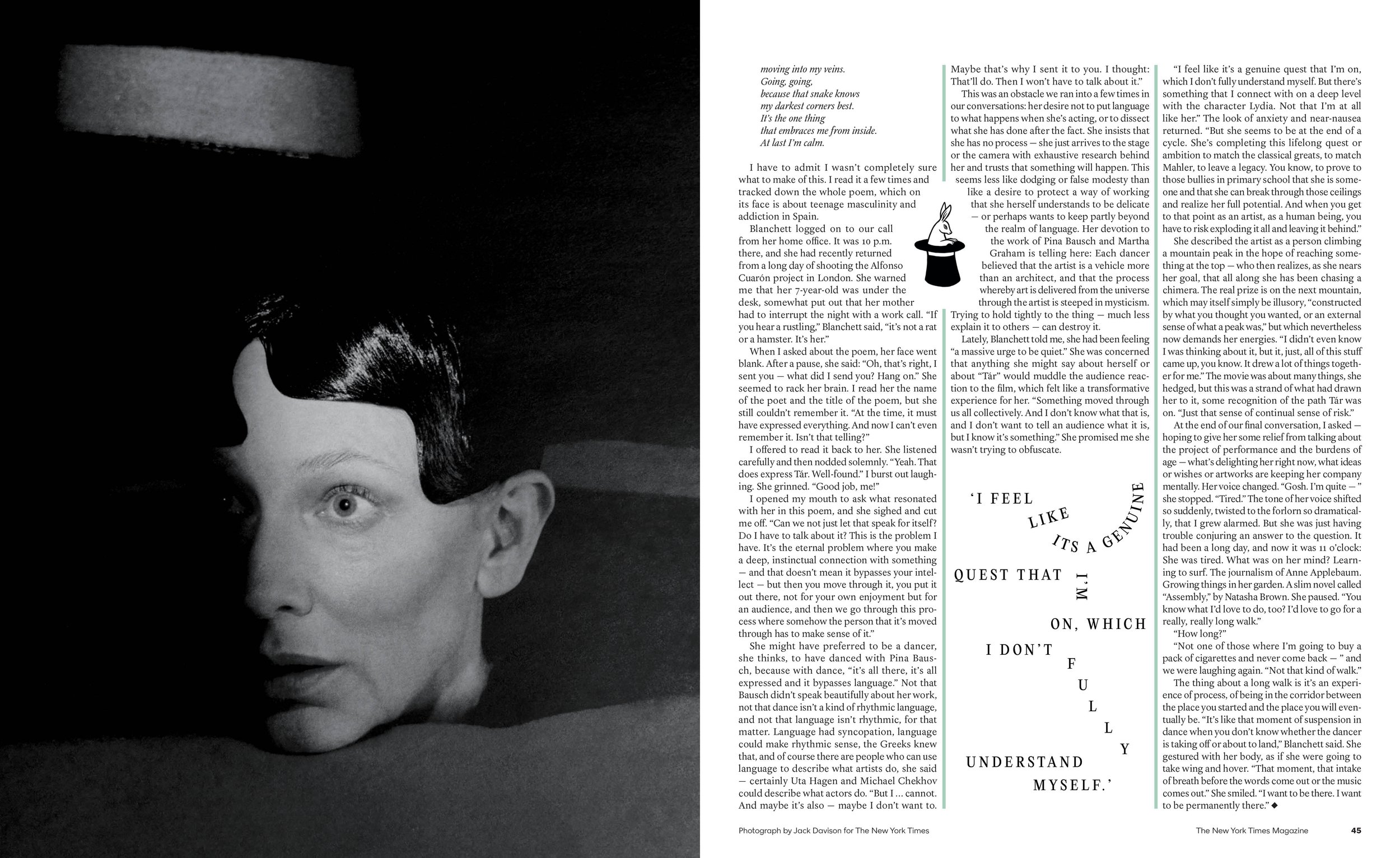
George Gendron: Have you gotten a call from Apple yet?
Kathy Ryan: What about?
George Gendron: Well, if Steve Jobs or Johnny Ive were still there, they’d be on the phone with you right now saying, “We’ve got to figure out how to collaborate here.”
Kathy Ryan: Well, you know, I’ve got my good friend, Rem Duplessis there. And Stacey Baker. Brilliant Stacey Baker, who was one of our photo editors. And Najeebah Al-Ghadban, who was one of our great designers, is there. And Marvin Orellana, who worked as a photo editor at the magazine, is there.
George Gendron: We’ve taken a lot of your time, but I have to come back to one thing, which is that you’ve been talking a lot recently about young photographers. A young photographer in particular. And yet on the one hand, we live in this age where everybody has access to all sorts of different platforms. And can be inspired to pursue creative projects. And yet it seems as if younger people coming up wanting to be journalists, writers, editors, photographers, videographers have a more daunting challenge than ever before.
And so I’m curious if you were in front of young students at an art college who are there because they want to hear what you have to say. What advice do you give to younger people who want to pursue a career in photojournalism? What do you say to them?
Kathy Ryan: The first thing I would say is follow your heart. Follow what you think is important. Photojournalists have to be opinionated. They have to take a stand. There has to be something that they care deeply about. And you have to have the courage to go for it.
George Gendron: Are you talking about subject matter or point of view or all of the above?
Kathy Ryan: Now I’m talking more about subject matter. So for example, Stephanie Sinclair, a brilliant photographer, early on started working for the magazine. She did incredible work on child marriage and she was the first photojournalist, as far as I know, to ring the alarm bell that there’s child marriage in so many places in the world, particularly Afghanistan.
We’re now going back 15 years, whatever. She cared so deeply about that subject that she committed her life to it. She obviously trained and developed her eye. She made remarkable pictures. So a young photographer needs to figure out what a photojournalist needs to figure out what do they care about. And then they have to go after it.
If you’re going to be a photojournalist, you need to actually start to develop something that’s yours. And then that leads to other things, like in the case of Stephanie. Then after that, she started talking about genital cutting. In many cultures in the world that still happens.
“It was one of the joys of iPhone photography. It removed some of that burden of ‘it better be good.’ Do I want it to be good? Of course. I work hard. You’d be amazed how many frames I’ll shoot of one thing, trying to get it exactly, precisely how I want it to look. ”
So she did an extraordinary photo essay for us on the brides in Afghanistan. And then she went on and did a photo essay on a cutting ceremony. And then she proposed doing something on underage marriage within the Fundamentalist Church of Jesus Christ of Latter-day Saints. And that will take you through your career.
So her deep empathy and concern for subjects affecting girls and women, particularly girls in the world, it’s like you have to almost be a visual activist. And she actually became an activist.
Earlier this year, when the draft of the Dobbs vs. Jackson decision was leaked in May, Jake wanted to do something related to that. And Jessica Dimson, the deputy director of photography of the magazine, had the idea to do something on the Cleveland Clinic maternal health clinic where pregnant women go who have risky pregnancies. And for years, doctors have had, as one of their things they can use in the treatment if there’s risk, the possibility of ending the pregnancy, which then suddenly, when the Supreme Court ruled, was no longer the case.
And I suggested we assign Stephanie. And knowing this lifetime of commitment, she was able to walk into the room with those women under duress, their husbands, their doctors. Maybe they’ve gotten news that’s disturbing. They’re making extremely personal decisions.
I think for young photojournalists, entering, as you’re right to ask, a very difficult field. It’s difficult to make a living, and difficult to compete with the abundance of imagery out there. But there are subjects that are under-covered. And if they can find one, if there’s something they care about, that will fuel them. That will keep them driven in a way.
Patrick Mitchell: I have sort of a cynical follow up to that question, now that we’re in 2023. And that’s, is there such a thing as a career in photojournalism, now and moving forward? And what does it look like?
Kathy Ryan: Oh, I think there's definitely a career because we're a visual society, so even though there are a lot of pictures, we still need someone to sort out what's unfolding out there to make smart, informative, focused pictures to tell you how to look at things. I think of people—Philip Montgomery, Mark Peterson—they’ve been at it for years. They’re still so impassioned that between jumping on a plane for self-driven assignments, or for us, or for the paper, or for other magazines, there are stories that actually need to be told by people who can make the complicated images they do.
LaToya Ruby Frazier, same thing. She does her own artwork, but they’re real documentary images. They’re real documentary portraits. Her approach is a little bit of a different approach.
You know, just because everybody has a pencil doesn’t mean they can write. Just because everyone’s making phone photography doesn’t mean they’re making the kind of pictures that merit a million people looking at them and then coming away with an understanding that a great photographer can bring to a subject matter.
George Gendron: One last question for you. Have you ever been bored in your job?
Kathy Ryan: No. No. I’ve never been bored. No, there’s never been a day where I’m bored. That does not happen.
Love City: 24 Hours of Romance, Lust, and Heartache in New York Photographs by Ryan McGinley
“Love City” was a special issue of The New York Times Magazine dedicated entirely to love in New York City over the course of a single day: Saturday, May 19, 2018. All the photography was shot on that date between 12 a.m. and 11:59 p.m. By choosing this theme and so tightly limiting the time frame, the magazine hoped to convey the city’s magical density of intimacies, the way it juxtaposes the private communion of one pair of lovers with the rollicking public energy of the bustling crowd—itself composed of numberless lovers communing privately amid the noise, all the center of their own universe.
Back to the Interviews
Design for the People
In this special episode we meet the creators of the 1980s/90s interior design juggernaut, Metropolitan Home: editor Dorothy Kalins and designer Don Morris.
For me, the 1980s comes down to two things: The Nakamichi RX-505 Cassette Deck and Metropolitan Home magazine.
First, the gear.
The Nakamichi RX-505 was an audiophile’s wet dream. It was prominently featured in the steamy 1986 film, 9½ Weeks. In a scene from that movie, Mickey Rourke walks Kim Basinger into his monochrome Hell’s Kitchen penthouse, where she glides through a living room full of furniture by Marcel Breuer, Richard Meier, and Charles Rennie Mackintosh. In the middle of it all, the Nakamichi opens, flips the Brian Eno cassette, and closes, automatically.
And now, the magazine.
Eighties movies featured a slew of inspirational apartments: Tom Hanks’ Soho loft in Big, Judd Nelson and Ally Sheedy’s Georgetown pad in St. Elmo’s Fire, Billy Crystal’s East Village flat in When Harry Met Sally. So when apartment dwellers from Des Moines to Manhattan asked themselves “How can I make my apartment look like the ones in the movies,” they turned to Met Home.
While the old guard, House & Garden, Architectural Digest, and House Beautiful, relished in displaying palatial estates and lavish celebrity spreads, Met Home was the design inspiration for the rest of us.
By the mid-80s — thanks to today’s guests: editor Dorothy Kalins and designer Don Morris — Met Home was the best-selling shelter magazine in America, boasting a higher circulation than all of them.
It was a magazine rich with design and lifestyle inspiration and beautiful apartments and houses, but Met Home was not a typical decorating magazine. Its stories were very personal and captured its subjects’ individual passion for the things that surrounded them.
But it didn’t last long. By the early 90s, thanks to a recession, Meredith sold Met Home to Hachette, who out-bid Jann Wenner’s Straight Arrow Publishers for the magazine. Hachette, though, was more focused on its own shelter book, Elle Decor, and left Met Home to languish and fade.
Kalins and Morris were gone, each off on their own new adventures.
For many of us, Metropolitan Home was a special magazine from a special time. A hopeful time. We were moving out — to dorms, first apartments, or starter homes. We bought affordable modern furniture from a brand-new Swedish big-box store called Ikea. We drank the New Coke while we played Donkey Kong on our Nintendos. We sang along with “We Are the World.” We watched Top Gun — the original — on our VCRs. And we paid an average of $375 (!!) a month for our rent.
Met Home gave its intrepid readers permission to indulge themselves in creating their own home design. And, as Morris says, “We helped expose people to a lot of design trends, but also gave them a sense of how they might be able to bring that into their own lives.”
Metropolitan Home chronicled an amazing period of design innovation. Its audience was hungry for new trends, products, materials, and tips, along with inspiration for travel, collecting, and entertaining. That said, the strongest covers focused on a singular theme to make the most impactful impression on the newsstand.
“People were living very differently and their values were different. They bought different things. They wanted to design differently. They wanted to cook at home differently. They wanted to share their homes with all kinds of different people. It was not going to be the Better Homes and Gardens lifestyle.”
Dorothy Kalins (Photograph by Roger Sherman)
Don Morris (Photograph by John Dolan)
George Gendron: I want to start by asking you guys a question that Pat and I have speculated about, and we’re wondering whether it’s just our imagination or whether there’s more than some truth to this.
Not only that, something big was happening culturally in the US in the late ’70s and early ’80s. So think of this as the Apartment Life/Metropolitan Home era. And something big had to do with these really profound changes that were taking place in how, maybe baby boomers, I guess I’ll use to describe who we were at the time — still are — how baby boomers viewed their homes.
And that changed expectations, I think, about what people were looking for in a magazine. And we, being such incredible fans, in particular of Met Home, often attribute, at least some of this, to what you guys did at Metropolitan Home. Taking a completely different approach to the home as it appeared in print.
At the same time, some of the people that I grew up with at Inc. Magazine, like [Gordon] Segal at Crate & Barrel, often refer to this period, not that they had started Crate & Barrel — Segal started it in ’64 — but this was a period where, all of a sudden, Crate & Barrel started to really take off.
To the extent that I know my Pottery Barn history, the same thing was true there.
Dorothy Kalins: Yep.
George Gendron: Part of this had to do with kind of accessible housewares — really well designed maybe for the first time, but talk to us, before we get to the magazine, talk to us about what was going on in the zeitgeist that you guys were a part of and a leader of?
Dorothy Kalins: Well, to give credit where it’s due, the editors of Better Homes and Gardens and the publishers who were — Better Homes and Gardens was the biggest magazine in America and it was published out of Des Moines, Iowa — a bunch of very professional, but very conservative people were our bosses. The editor and publisher of Better Homes and Gardens kind of thought that perhaps the children of the Better Homes and Gardens readers would not be readers of BH&G.
And you’re right. It really is a baby boom idea. Our generation didn’t want to live like our parents. I mean, the fact that we have turned out to be more like our parents than not is something else altogether. But there was a huge rebellion. And we were not them.
And to their credit, they started a magazine out of the special interest division of Meredith called Apartment Ideas. They had a special interest magazine division that did things like gardening and building your patio on a weekend. And there was a whole division of special interest publications.
And so the real seeds of Met Home were in a quarterly magazine called Apartment Ideas. And the idea was that the people who were coming out of college were not going to go immediately into buying a home in the suburbs the way their parents did. They were going to experiment, they were going to travel, they were going to live in different combinations of people.
They were going to live in different ways, in different styles. Sometimes just to spite what their parents did. And they were right about that. So that magazine started sometime in the ’60s, became a quarterly, then became a monthly, and then sometime in the ’80s became Metropolitan Home. Because it really was following this generation as it came out of school, established our first apartments, our first roommates, our first relationships, and et cetera, et cetera.
Kalins had been at Apartment Life, Meredith’s youth-oriented home magazine, and later rebranded it Metropolitan Home. When Morris was hired to redesign the magazine, the first thing he tackled was the Met Home logo. Having a logo that felt cloned from The New Yorker wouldn’t do. Morris worked with noted type designer Dennis Ortiz-Lopez. The first iteration was a sans serif that balanced the letterforms and fixed the kerning. The second refined the logo and added small spiky serifs to reflect then-current architecture and interior design. And finally, the characters were made more condensed and spaced apart so the logo could mingle more with cover photography while remaining a strong statement.
George Gendron: You said when it was launched it was called Apartment Ideas?
Dorothy Kalins: Yes.
George Gendron: And when did it change its name to Apartment Life?
Dorothy Kalins: Somewhere in the late ’70s.
George Gendron: And then they recruit you, then you go to work there, right?
Dorothy Kalins: Yeah. Well, I was in New York and then, yes, I did. Then I went to work there.
Don Morris: Dorothy founded Met Home.
George Gendron: Yeah. So how did that magazine transform from Apartment Life to Met Home, and explain your role in it. Was that your idea or did they come to you?
Dorothy Kalins: They were smart enough to hire a group of social researchers called Yankelovich. It was Dan Yankelovich’s company. And they were really on the leading edge of this kind of generational surveys, studies about behavioral attitudes and buying patterns and all of that. And it became really, really clear that there was, in fact, a Baby Boom and that they were not going to behave the way their parents did.
Their values were different. Their M.O.s were different. Their living arrangements were different. And the people at Meredith that were smart enough to know that they needed a different magazine. And the reason it changed from Apartment Life to Metropolitan Home was that all the studies — there were, there are lots and lots of studies. Meredith’s a big company and there they did lots and lots of studies of their readers and of these behavioral patterns.
And it was very clear that these people were grouped around cities, the people who were attracted to Apartment Life. And they were, in fact — I mean it’s, when you look at it and you look at the map of Georgia in the recent election, it’s all those blue counties. And that’s what happens. The people came to the cities all over the country. So that’s where the Metropolitan name came from.
“I remember going around the country with the first issue of Met Home saying, ‘It’s not the Pepsi generation, it’s the Perrier generation.’”
George Gendron: And you became the editor-in-chief, the founding editor-in-chief of Met Home?
Dorothy Kalins: Mm-hmm. I was the editor of Apartment Life. Yeah.
George Gendron: So, go back to a point before you had launched that premier issue, and tell us what was the blueprint, what was the idea, what was the positioning behind this new magazine called Met Home that was growing out of Apartment Life?
Dorothy Kalins: Well, first of all, the circulation of Apartment Life, at the time we made the change, was 800,000. Which was a very, very large circulation for such a magazine.
I mean, it wasn’t the 6 million that Better Homes and Gardens was, but it was a very hefty size. The idea was — it was very much a marketing idea — to take the top, the crème de la crème, of that readership, around the most major cities, highest income, highest education, and realize that these people were living very differently and that their values were different.
They bought different things. They wanted to design differently. They wanted to cook at home differently. They wanted to share their homes with all kinds of different people. It was not going to be the Better Homes and Gardens lifestyle.
So at that point, I remember going around the country with the first issue of Met Home saying, “It’s not the Pepsi generation, it’s the San Pellegrino, or the Perrier generation.”
It was the Perrier generation. It was those subtle ideas of what we were drawn toward. And we thought we thought we were just … everything. I guess every young cohort thinks that, right? That they’re the hippest, smartest, chic-est, whatever. But basically we wanted to talk to them where they lived.
And we did not want to talk to our readers in a dictatorial way. We wanted to talk to them in a journalistic way. And that was the editorial positioning of Met Home.
George Gendron: That’s a great line. “It’s not the Pepsi generation, it’s the Pellegrino generation.” Which you could argue was a tagline for how you spent much of the rest of your professional life.
Right? Because it wasn’t just about Met Home. It was about gardening. It was about food. Cooking. So how did you and Don meet, and what was Don’s role at Met Home in these very early days?
Dorothy Kalins: Well, I’ll tell my quick version of it. At that point, I had an office in Des Moines and in New York.
I was going back and forth and we had much of the art department. There was an art department in New York, but not the definitive production of a magazine. And it was time to make the switch to be a New York-based magazine. And we had a very nice man who was an art director who wanted to go off and become a photographer again. Right? Isn’t that what happened?
Don Morris: Yes.
Dorothy Kalins: We were talking earlier about New York magazine and how all of our collective experience with New York magazine shaped us. And so it definitely was one of the first things that I did after my first job at Fairchild. But after that, I was a contributing editor at the very early New York magazine. And I got to work directly with Milton [Glaser] and Clay [Felker]. And I was really influenced by the energy, and the chutzpah, and the point of view they had. Journalism first. The look of the magazine really mattered. Every detail about it mattered. It all added up to something that nobody had really seen before.
So, fast forward, we were looking for an art director. I opened an issue of New York magazine and I saw a layout of objects. I don’t even remember whether they were chairs or gifts or whatever, but they were put on the page with such verve, and intelligence, and charm.
And our magazine covered a lot of objects, chairs, sofas, cups, saucers, pitchers, whatever. And I just wanted that energy. So I literally said to the art director who was about to become a photographer, “Find that person who did that layout.” It’s rare when you can trace it to that exact thing. But that’s what happened.
Met Home Franchise Stories
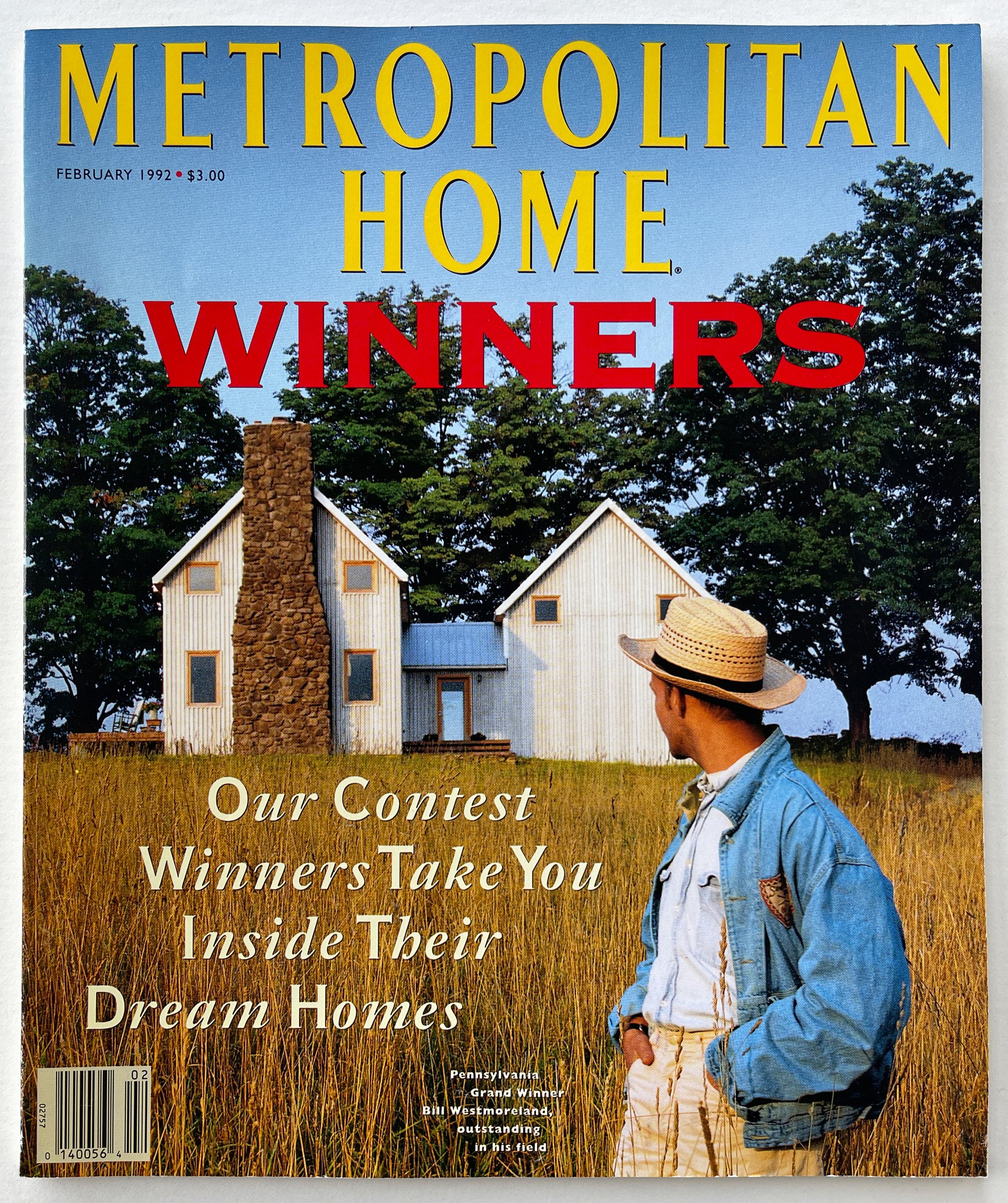

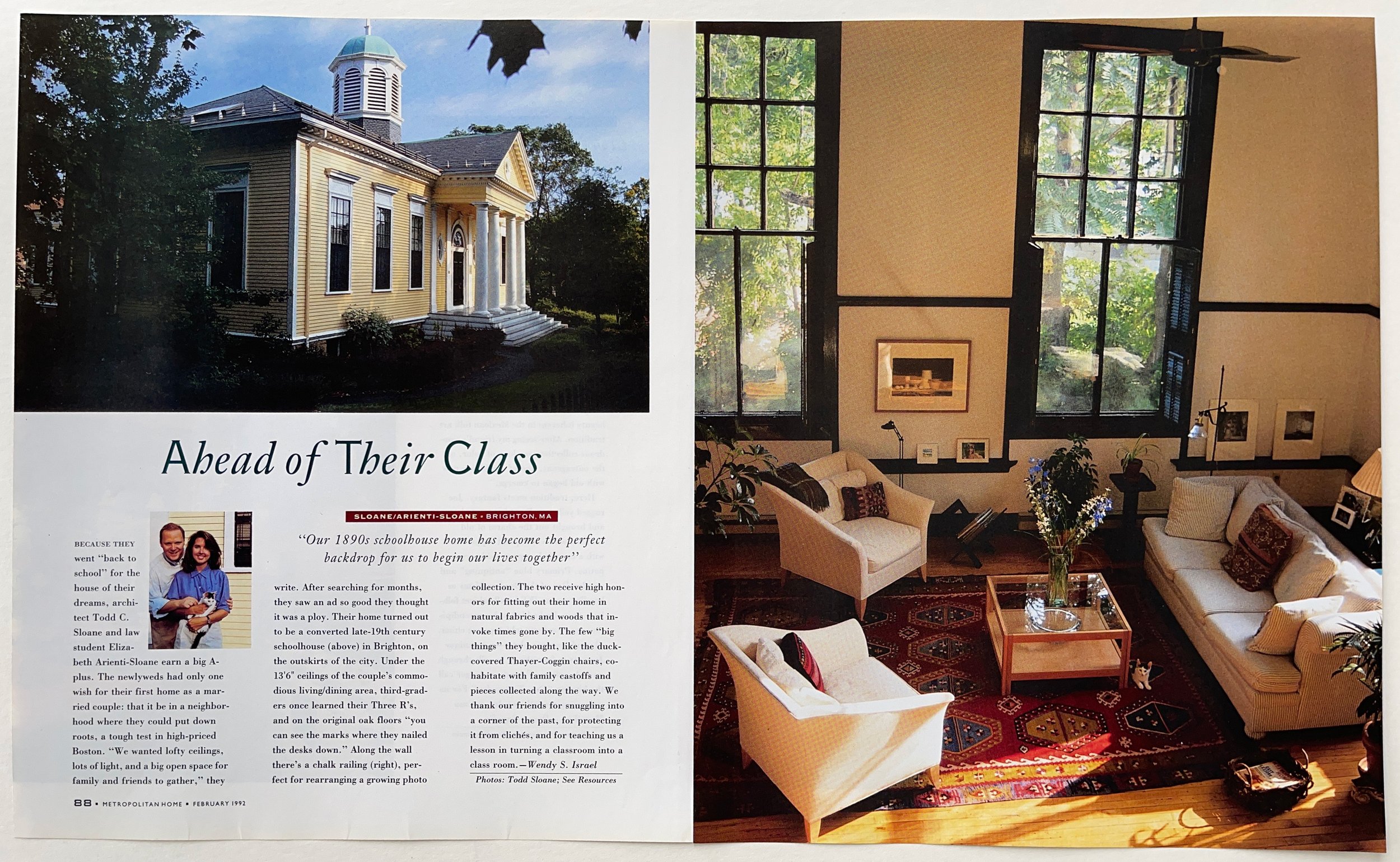
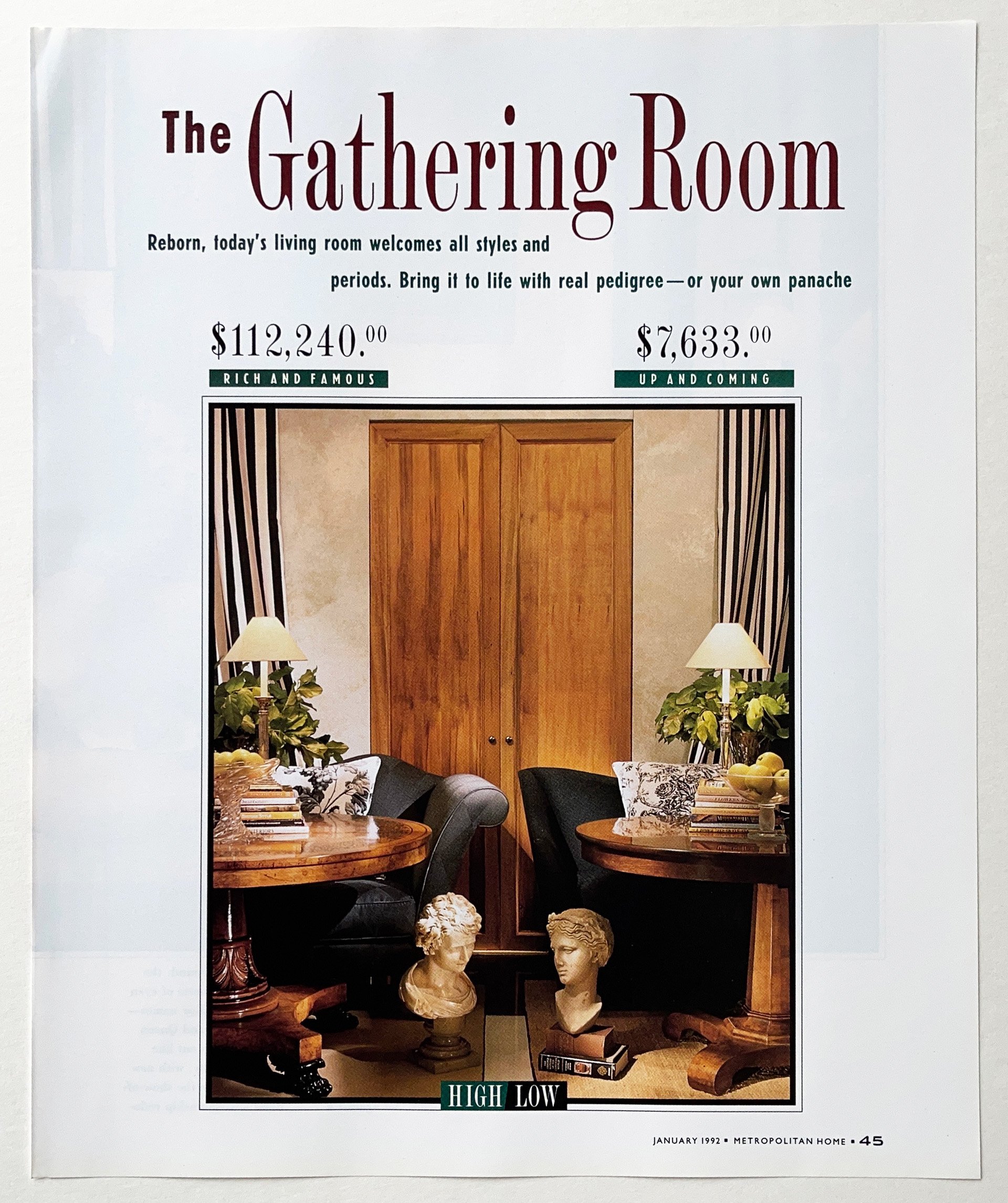

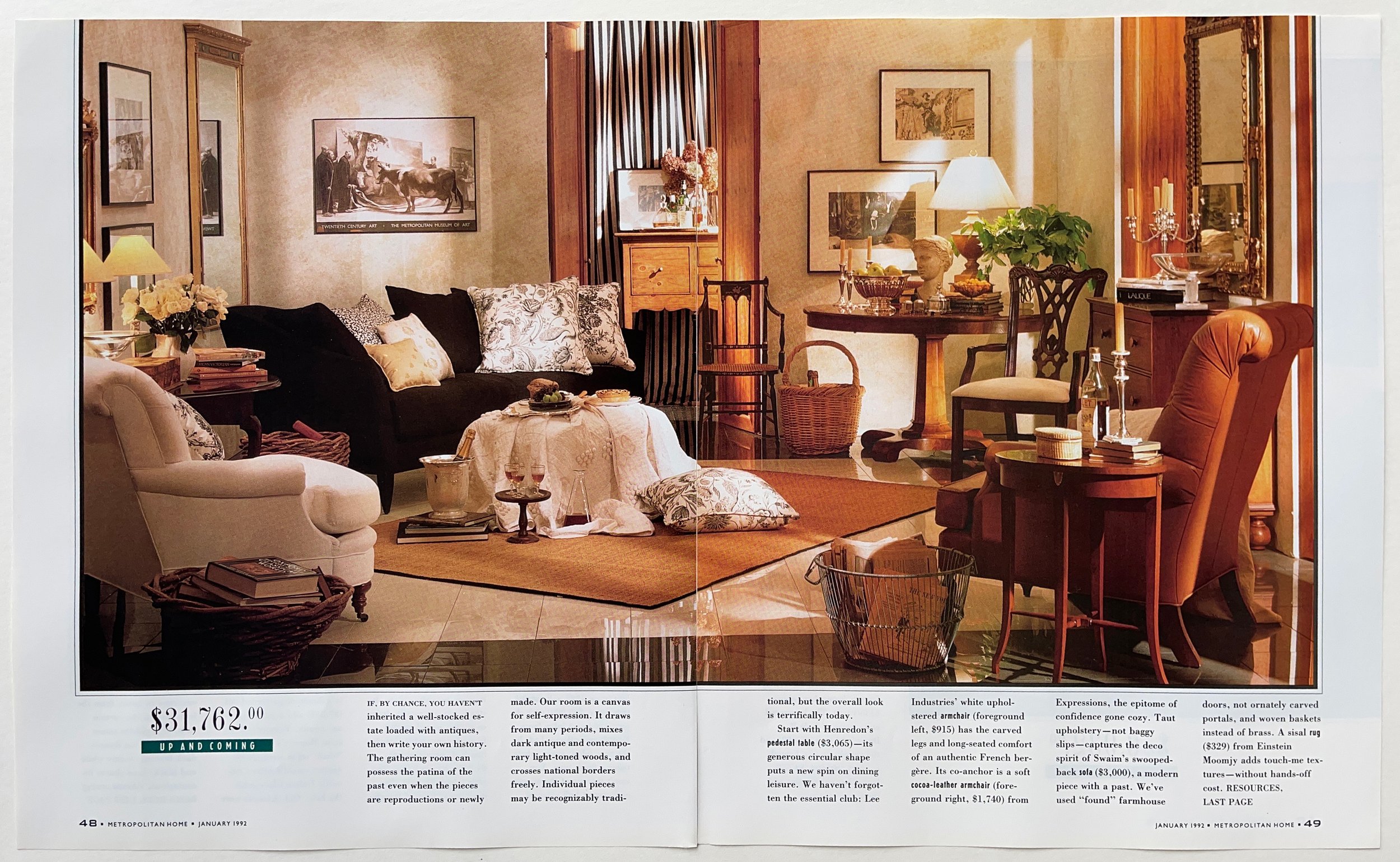
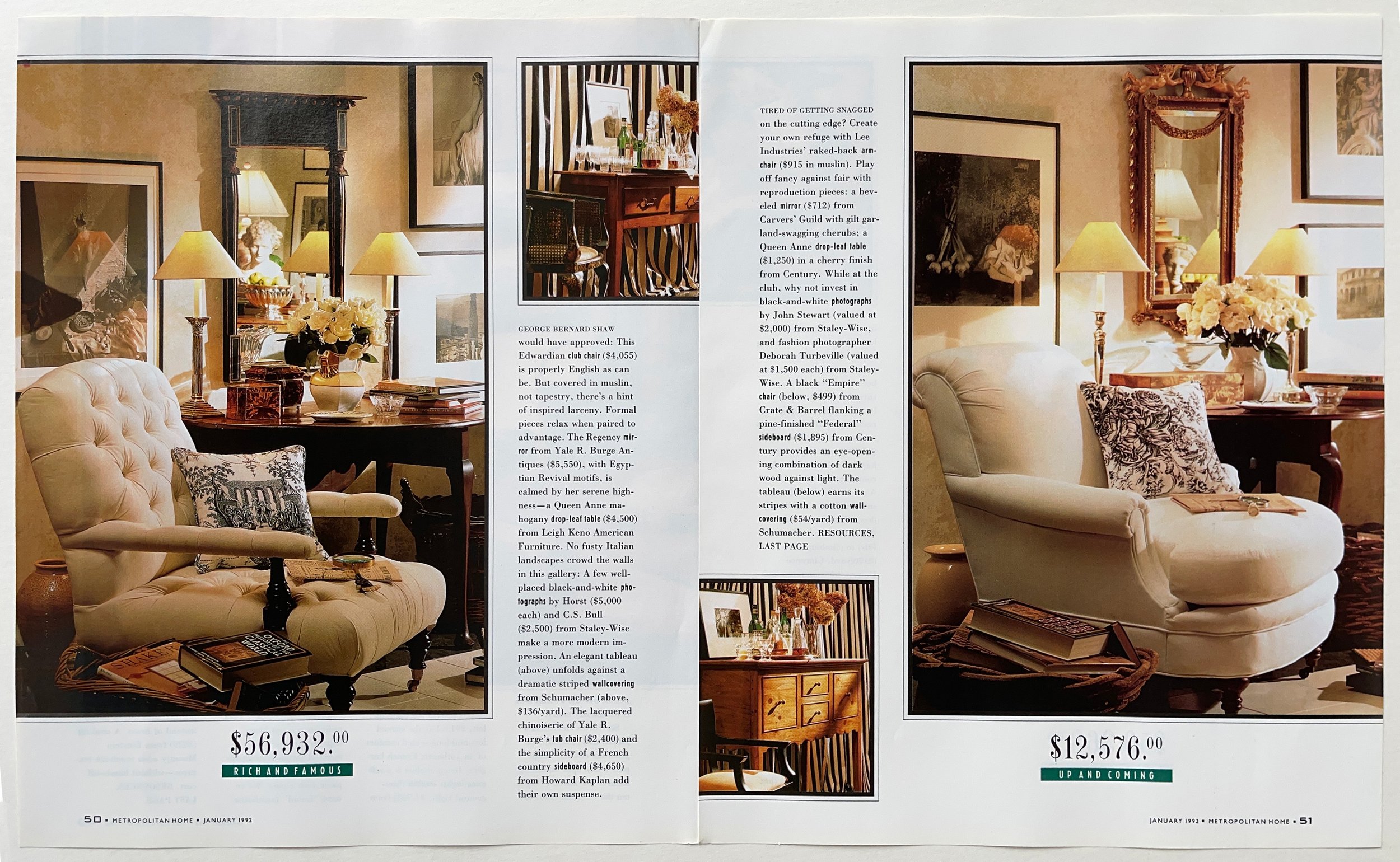

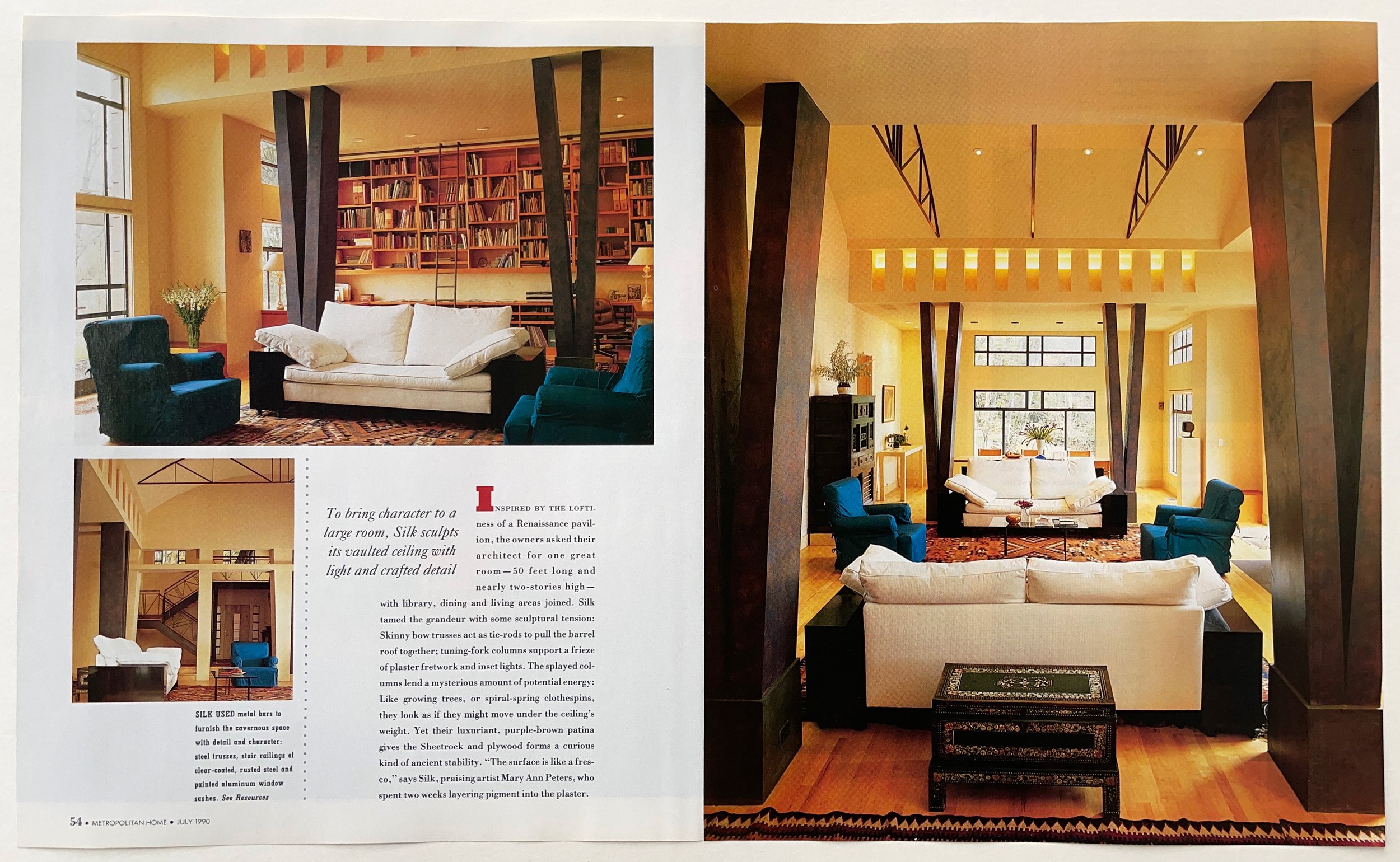
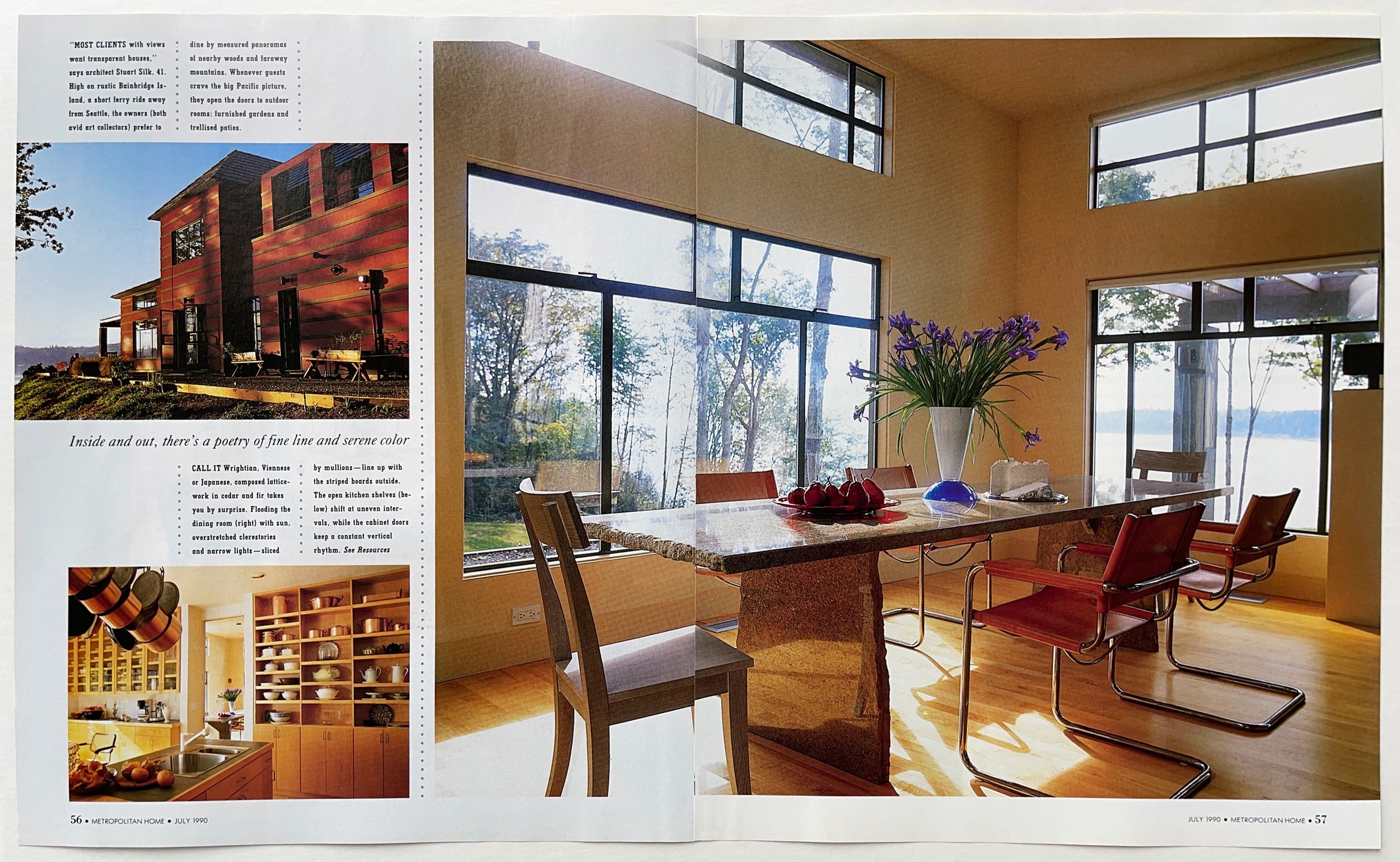
Using regular focus groups, competitions, and reader letters, Kalins identified the stories that our readership craved on a regular basis. Above, three examples: Met Home’s annual reader’s homes competition, the High/Low extravaganzas produced by Carol Helms that showed luxurious furnishings and very similar yet affordable alternatives, and inventive renovations of the ubiquitous ranch-style home.
George Gendron: And we’re assuming here that that layout was done by Don Morris.
Don Morris: Well, they couldn’t find the guy that did it. But I stepped in.
George Gendron: Nice move, man.
Don Morris: Yeah. New York magazine was just an incredible experience for me. I had just recently graduated from Parsons and a friend of mine who was working there was moving onto his illustration career and asked if I wanted to do what was the lowliest job in the art department: running the stat machine.
And it was like walking into an improvised sitcom, you know, just incredible characters, incredible energy. So many different paths crisscrossing. The non-sequiturs floating around were just so funny and so full of smart minds that I was just taken. I always thought I’d be there for about two weeks.
Dorothy Kalins: It was never a division. Something that you and I always maintained. There was never a division between words and pictures. Never. It was always the pages. It was always the message. It’s how you got the energy out to the reader.
George Gendron: When we were talking a few days ago I was mentioning my time there as a very young kid and that was my first job. And so I grew up, unfortunately, with the expectation and understanding that, “Well, that’s the way all magazines worked.” You know, that’s the way all editors and designers collaborate. And then I left New York and found out...
Don Morris: So Roger Black had just taken over at the time at New York and I’m running the stat machine, and thinking that I was only going to be there for a little while. I was always asking questions and seeing if anybody needed anything, and I just couldn’t believe I was there.
I was so excited about being there that I think I had this smile plastered on my face the whole time. And about four months in, Roger Black came in and — he moved through the art department like the furniture was going to stop him. It was just like this force going through and talking as he went.
And always very entertaining. And he asked me if I wanted to go out to lunch with him. I went out for my first business lunch, had my first sushi. And he’s telling these amazing stories and at the end of the lunch he said, you know, “I love your enthusiasm. I love that you have an interest in all this. You have great ideas. I’m going to make you assistant art director.” So I came back ...
Dorothy Kalins: …Had you done layouts before?
Don Morris: No. No.
Dorothy Kalins: “You’re a nice guy. You’re adorable. I’m making assistant art director.” [laughs]
Don Morris: You know, yeah. It was sort of shocking.
George Gendron: What did he see in you?
Dorothy Kalins: Smartest thing he ever did!
Don Morris: I don’t know. You know, I was really struck from the beginning with the generosity that a lot of people in magazines had. You know, before that ever happened, just the way that people would explain to me what’s going on and exposed me to things.
And then after that, the four people I was in charge of had to teach me how to do the job. So it was my first challenge of management. But luckily I had such nice rapport with them and they were such nice people that they helped me along. So I learned a lot. And when Roger left, Robert Best took over.
Patricia Bradbury was his art director. And Bob was just a force of energy and goodwill. And he did a lot of things — at the time, Ed Kosner became the editor and wanted to put a stop on anything that was too experimental. He wanted to make basically Newsweek for New York and bring credibility into a magazine that was known for being very fluffy.
And, at a certain point, we were doing layouts twice. We would do Ed’s version and we would do Bob’s version on a weekly basis to try to get ideas across. And we did this for months. And for me it was an incredible opportunity because I was in charge of the more formatted thing. So I learned really how to do layouts in a pretty executed way while Patricia and Bob would experiment and go off and do these amazing things. And then I would draw little dingbats or little drawings for the things that Bob was doing. And, at a certain point, there was this incredible moment where you would meet with Ed and he would talk about the stories and he started to draw on a pad ideas that we had shown him in layouts that were rejected.
So Bob’s tenacity — and you know, he didn’t change. He just moved through things. He was someone who saw the long path during a weekly deadline. And from that moment on, we got to do all these different things and Ed trusted us.
And so when Mike Jensen, the art director, came to me — I think I had been there for four years — we had won the National Magazine Award for design. It was just thrilling. And I was ready. I had done a lot of studying. I was working on a lot of freelance on weekends.
I was really trying to really get to know this as well as I could, spending a lot of time at newsstands. And I became really enamored with the Esquire that Robert Priest and April Silver and Stephen Doyle were doing. It just was, I thought, an incredible, urbane, bold execution of a magazine.
And as I read it, it really brought me in. And as I became an avid reader, I saw how well it articulated the voice of the magazine. So that was a completely different thing than New York, which kind of changed its hats every week, doing radically different editorial requiring radically different solutions.
So when Mike Jensen came to me I was really intrigued with the idea of taking a magazine and really trying to find its personality and find its voice. And when I met with the staff, it was this incredibly exuberant staff at Met Home who really knew the subject and were incredibly enthusiastic and knowledgeable about it.And I didn’t feel like that was on the pages.
So I left the interviews thinking, “This is an incredible opportunity because I think I can make a magazine that looks the way I hear these people exploring and speaking about the subject matter.” So it was just a great moment for me to move on to something that was a whole different kind of way to think about design.
“For Dorothy to say to me that she liked what I was doing and felt like it was making some change to something that she held so dearly was an incredible thing.”
George Gendron: I want to put the Met Home story itself on pause for just one moment and comment that we’re talking about 30 years ago. And fast forward, and you two, editor and designer, are still working together 30 years later. I think that’s probably more challenging and difficult than sustaining a marriage for 30 years!
Don Morris: Yeah. Well, you know, we considered marriage, but we thought this would be better.
Dorothy Kalins: Yeah. Way better!
George Gendron: Very smart. So what’s the secret sauce to having this kind of vibrant, intense, collaborative relationship that lasts not for a period at a publication, but for decades over a wide variety of different projects?
Dorothy Kalins: I think it's mutual respect and we love the work. We love the work. Yesterday we were on the phone for five hours just laying out one chapter of a book we’re doing, and it’s a constant conversation. The conversation is probably the same conversation we’ve had for many, many decades. But it’s always about how to get the ideas across. It’s never about decoration.
It comes from an intrinsic love of the subject matter and then, you know, a very eager way to interpret the way it goes. I mean, when I started doing books after a long, long career in magazines, it was never a question to me. And Don had his own studio by that time and — we’re skipping ahead decades — but we just started doing from day one, my first book, I knew.
See, there’s a little subversiveness here. It’s not just ego. I just knew that we know how to tell stories. And when I started doing books after I left my last magazine job, I thought, “Books are so stupid.” They’re done by 16 different people who are not talking to each other. You have the person who’s the writer, then you have the person who’s the photographer, and then you have the person who’s the designer, and then you have the person who’s the production manager. And nobody makes something that’s a whole. And I said to myself, “If I’m really lucky, I’ll be able to do books the way we’ve done magazines.” Which is a totally collaborative way.
So on every book we’ve ever produced, we’ve had an agreement — and we are lucky enough to have found a good agent who was able to sell this — that we deliver finished files. Just like a magazine goes off to the printer, our book is finished. Now, fortunately, we rely on a copy editor at the publisher and, believe me, I love copy editors, and publishers do certainly add value. They get the right paper and they make sure the binding is right and they produce the cover, and they sell it. Maybe. Sometimes. But we really do books the way we’ve done magazines.
George Gendron: Okay. Don, what’s your version of that relationship?
Don Morris: Well, to go back to the beginning when I was hired to redesign the magazine, that was always kind of part of the brief. And so that meant that I could begin experimenting and begin talking with the staff and looking at the competition, looking at what we wanted to do.
And four months later — Met Home had great parties, you know, everybody, there was a great cook. They knew entertaining. We talked about entertaining. And they had the best parties. And, maybe four months in, there was this party at someone’s townhouse — I think Ben Lloyd’s townhouse in Brooklyn — and we all got out there and, you know, there’s fabulous music, great food. We’re having this great time and just hanging out together and laughing. And Dorothy pulled me aside and said, “You’ve already made a tremendous change. I’m so excited about what you’re doing.” And that was incredible. It was incredible to have that kind of support.
The Met Home Mix Tape: Art department tunes, circa 1986–92, courtesy of Don Morris.
And Dorothy had a very journalistic approach to design. So she really understood it. She really understood what was going on at the time — who was making waves, who were the people that were doing work that really lasted over a period of time. And for her to say to me that she liked what I was doing and felt like it was making some change to something that she held so dearly was this incredible thing.
So from the beginning, I had a lot of support. And that also meant that I had to go through a gauntlet because the magazine was filled with design people. Journalists as well as people that built sets. That thought of really incredible solutions to ways to live. And they would build things.
And we would put all the layouts on the wall and everyone was invited to comment. So it was rigorous, but it was also smart people talking about what you do. So I had to defend things. I had to learn things. The whole experience was really like going to grad school.
We had a network of writers and editors around the country that we called city editors and they would report on what was going on in their part of the world, part of the country, trying to pitch stories. So it was competitive and they would come in a couple of times a year, they were constantly feeding new ideas.
So as a young designer, I was hearing about all the stuff that was going on all around the country. Seeing images of it, hearing about what was moving, what was shaking, what was working, what wasn’t in retail, in design, in architecture. It was incredible. So I would go back and I’d talk to the people in my art department at certain points, the people that were higher in the art department would also attend these meetings.
It was all about learning and reflecting on what was going on, and trying to figure out how the magazine would, again, get that voice and get that sort of framework that would really be in sync. This pretty incredible moment with a lot of design exploration was happening in the country, but also in the world. We did a lot of things in Europe. We started to look at Japan. There was a lot of really interesting information that was always passing through the doors. And that was great for us to be influenced by.
George Gendron: Don, you mentioned the network and I’m curious about that perhaps because I was myself in New York and a New Yorker, and I was an avid reader of Apartment Life. I always thought of it as very New York-centric. And maybe it wasn’t.
Dorothy Kalins: It was Des Moines, Iowa-centric at that time, early on!
George Gendron: Well, you fooled me, I gotta tell you. And so I’m curious about this idea, Dorothy, about having this national network of contributors.
Dorothy Kalins: We always believe that ideas come from all over, and it was never a top-down dictatorship. I never believed that. I always believed that you get the smart people in a room and the best ideas happen, they “verbal up.” And that’s my little parenthetical about people who are now working remotely. I mean, we managed to have a conversation right now, with us, because we share a frame of reference.
But think about the young people. Where do they learn? They don’t learn sitting at their computers and then going off and watching television at night. You learn by being, by experiencing, by traveling, by talking, by all being in the room together. And I just believe there’s a certain chutzpah that happens when the people are in a room together and you get the right people.
And I always gravitated toward people — not Don, because Don was demonstrably excellent in everything that he did — but some of the design editors that I hired were not people who came from House Beautiful. They didn’t come from Architectural Digest. They came from life.
One worked with Terence Conran at Habitat in London. One was an Italian American who grew up in Italy and just happened to have the right fingertips to everything. One was a woman who had worked at Better Homes and Gardens, so she had the grounding on that. But she was frustrated because she couldn’t do enough. So it was always “get the people in the room.” And it’s all the people.
Not only were there no walls between the art department and the editorial department, there were no walls between the kids we hired — really smart assistants who all came out of good educations and learned everything and they were hired up and they became editors themselves. So it’s about the ideas. And it’s about the energy. That’s what magazines at their best are.
You know, I’ve taught for years and years and years, both at the Stanford Publishing Course and at Yale, and I hear what people do at other magazines, which is, “You have to submit an idea in writing.” Well, if you submit an idea in writing, you’ve already sucked the air out of it and you don’t have that buy-in.
What happens when people are really enthusiastic about being in a room together and they make it better. They just nudge it a different way. And they feel a part of it. So that’s how we built our staff and that’s how we operated.
MH Gatefold Maps
At the height of Met Home’s success, many advertisers requested placement in the most highly-trafficked sections of the magazine. This led to the creation of special gatefolds—a premium adjacency to editorial. Toyota sponsored seven pages of editorial with one ad page for a special Los Angeles issue. Morris commissioned pioneering digital artist April Greiman to produce a striking (and useful) graphic — going to bat to acquire a fifth color channel for a Pantone fluorescent orange. For the New York issue, Morris hired photographer Harold Sinclair to create a fanciful Manhattan skyline peppered with sleek tabletop design objects to set the theme.
George Gendron: A theme running through a lot of the Print Is Dead podcasts is this: the thrilling experience of working shoulder to shoulder with a very diverse group of people.
Dorothy Kalins: Mm-hmm.
Don Morris: Absolutely.
George Gendron: Adam Moss, who we did an interview with recently, said one of the things that he loved about his period, particularly at New York magazine, was that there’d be times when an idea found its way into the magazine and someone would say, “Oh, that’s a great idea where’d that come from?” And he had no idea.
Dorothy Kalins: Yeah.
George Gendron: It had been in this fluid group discussion...
Dorothy Kalins: In the air! Right.
George Gendron: You know, and it probably started with something that wasn’t anywhere near the refined idea when it made its way into print and people would start to riff on it.
Dorothy Kalins: The other thing is that people, they urge you on to become more audacious. You become more audacious in a group because you think, “Oh, we can do that? We can try that? We can, ooh...” And I know it’s true. I’ve seen it happen to me. I mean, I come in thinking something, not conservative, but certainly a set idea, and then it just gets better. And there’s buy-in by everybody in the staff. So it belongs to everybody.
I don’t believe that creativity comes from a top down dictate. I mean, it can. And that’s how a lot of businesses are run. But it’s not what I love or thrive in.
George Gendron: Flashback to a moment when I was still a very, very young kid in the New York magazine newsroom. And mostly I was editing and I wrote for the Intelligencer. But I hadn’t really done any substantial writing. And I had this idea, I won’t bore you with the details, but I went to Shelley Zelasnik and pitched the idea, and I barely got the first two sentences out. And he said to me, “What is it you want from me, young man?” And I said, “Well, I really want permission to do the story.” He just said, “Just go do the damn story. If it’s good, we’ll publish it. If not, we won’t.” And that was huge. Because we don’t come from that kind of an environment, most of us, right? And so what you’re talking about in these meetings about being audacious is that it’s, for young people, it gives you a kind of permission to think big and to realize, “Man, I can go off and do this.”
Dorothy Kalins: Yep.
Morris on MH’s approach to illustration: “Though photography dominated our pages, we regularly enlisted top illustrators to bring abstract concepts to life, or to add wit to lifestyle stories. We took all visual storytelling very seriously. Among our talented contributors were: Steven Guarnaccia, Victoria Kann, Barry Blitt, Steve Salerno, Jon Pirman, Judy Pedersen, Gene Grief, Paul Yalowitz, and C.F. Payne.”
George Gendron: One really crucial theme here that I’m glad we’re exploring, we were talking about some of the packaging devices that you guys invented at Met Home that people adored. And I forget the names of them, but you know, the elegant room on the left and then the modestly-priced equivalent of that on the right, the details that you would zoom in on.
Dorothy Kalins: I can tell you exactly where that came from. So my first job was at Fairchild Publications. I was on Home Furnishings Daily and Women’s Wear Daily — which was the hot rag — was next door to us.
And so I read it every day and they had a little feature that was maybe a quarter of a page and they put, “Get the Look for Less.” And that was when I was five minutes out of college. And then we started doing Met Home, and I thought, “A lot of the furniture that we’re seeing just isn’t affordable.”
And the thing that they would say to put us down was that we were “orange crate.” We decorated with orange crates. We never did. Maybe a wine crate, but never an orange crate! And I thought, “Okay, well, what that does is that lets you just take off on an idea and go with it.”
George Gendron: But you also said something else to me that was very interesting. And you said, maybe it was about the details in a room, and you would zoom in and you said to me, “Well, you know, you have to use everything because you just don’t have unlimited resources.”
Dorothy Kalins: Mm-hmm.
George Gendron: And boy, do I think that’s true, this notion that scarcity kind of breeds invention and resourcefulness and creativity.
Dorothy Kalins: Well, it gets back to the tools of magazine making, which is one thing that Don and I really invented when we were doing this together was that you took ideas apart.
Like, I see a room behind you. And I see a sofa, a striped sofa, and I see there’s a lamp on a table and there’s some black and white pictures artfully tilted against the bookcase. And if you call those out and let people focus on that, instead of just room after room… Remember you asked the other day about what our competition was and it was really staid pictures of rooms from Architectural Digest, House Beautiful, House & Garden. They had different levels of taste and style and approach, but we were about journalism.
Don Morris: Right.
Dorothy Kalins: We were about the ideas. We were about conveying the ideas. We were excited about things. And we made our pages exciting. And that had never been done before.
George Gendron: It’s about a sensibility that you bring to something.
Don Morris: Well, from a formal standpoint, there was kind of a way that interiors were shot. And it had to do with correcting the perspective and lighting every inch. And they were presented in a hands off, finished, almost gallery-like way.
Dorothy Kalins: It was all about pretentiousness.
Don Morris: Yeah. And the mission of the magazine was to get people in there and make it feel like people were in there. Make it feel like it was a real space. So we experimented a lot with the kinds of photographers that we would hire, the ways that we would approach shooting a room. The idea that certain things would fall out and that was okay, because that’s what it felt like when you were there.
And that led to us starting to invent these editorial concepts, these editorial conceits that were more like the way magazines we had admired tackled their subjects. And creating these things that became franchises like what you mentioned was called “High/Low.”
And we had a way to do the logo of that. And we had a way that we would pair the rooms. They were tremendous productions. We had a studio and Carol Helms, one of the main design editors was in charge of all of this and created this. And you would go down to visit and it was amazing to see this whole thing coming together.
But that was just one conceit that was developed to be able to have something that people could remember Met Home by. That was something that gave them a little bit more information, more useful information to take away. And we tried to do that, and that led to themed issues and reports that we would do. We got more and more ambitious in our journalistic approach.
Dorothy Kalins: Yeah. The idea of journalism coming to the field of home design — they had never met before. They didn’t know each other. And not only did we have to do it because we were interested in that, it was our point of difference to our readers.
And our readers were interested in that. That’s what they want. They didn’t want the staid interior — you know, I invented the phrase “buttery sunlight” because we used available light, which meant that photographers wouldn’t light the room. We used to call it “holocaust lighting,” which is when they would come and blast every sense of light away from the room.
But it started with that. So everything had to fit that. You could be playful with where you put captions, and you could play with the language of design. You could play with the language of home. Because we wanted it to be about personality. We didn’t want it to be just about pretention.
“I always believed that you get the smart people in a room and the best ideas happen. You learn by being, by experiencing, by traveling, by talking, by all being in the room together. And I just believe there’s a certain chutzpah that happens when the people are in a room together.”
George Gendron: I am sure you’re aware of this, and I’m sure you heard this many times, but the effect that all of this had, among many other things, was, I’m going to use your word, Dorothy, from when you were talking about one of the effects of being in a group and brainstorming, and that is it gave readers a certain kind of permission to think about the fact that they could express themselves through their homes as well. And that this was not a pursuit of the wealthy. You didn’t have to be able to afford an architect. And perfection wasn’t the goal. These homes looked lived in. They looked like places that would be fun to entertain in, to cook in, have friends over. There was a kind of invitation.
Dorothy Kalins: At the same time, we did cover who we thought were the most influential architects in the world. And designers. Because the ones that we gravitated to, and the ones who we featured, were people who wanted life in their rooms, in their houses, in their homes.
They wanted energy, and warmth, and human interaction. They didn’t want the kind of sealed off protectiveness that a slipcover gave you that you wouldn’t dare touch.
And I think the way you used captions, Don, and the way you were able to manipulate the elements on the page was always lively. It gave a reader something to do instead of just turn the page, turn the page, turn the page. There was always a reason to stop and read something and delve further into it. So it was very interactive before there was anything interactive in magazines.
Don Morris: Editorially, again, looking at the landscape, magazines that centered on this subject were pretty siloed in their point of view. You were modern, you were country, you were traditional. And we took a much more humanistic approach. People were walking through this world and they were exposed to Italian design and they were exposed to amazing antique pieces that spoke to them. And so we gave them permission to, to take what they saw in the world that they loved and help them to figure out how to make sense of that or to show some approaches that shows how the sleekness of some things can work with the sort of more ornate nature of other things.
And so this whole kind of personal style was celebrated and explored. And that also came through with a lot of the designers and architects that were putting their mark on the world with what they saw and what they were putting out there. What it was about them that made them different.
And we helped to expose people to a lot of different design trends, but also give them some sense of how they might be able to bring that into their life. So it was very relevant. It wasn’t like that kind of temple-like point of view.
The Met Home Design 100
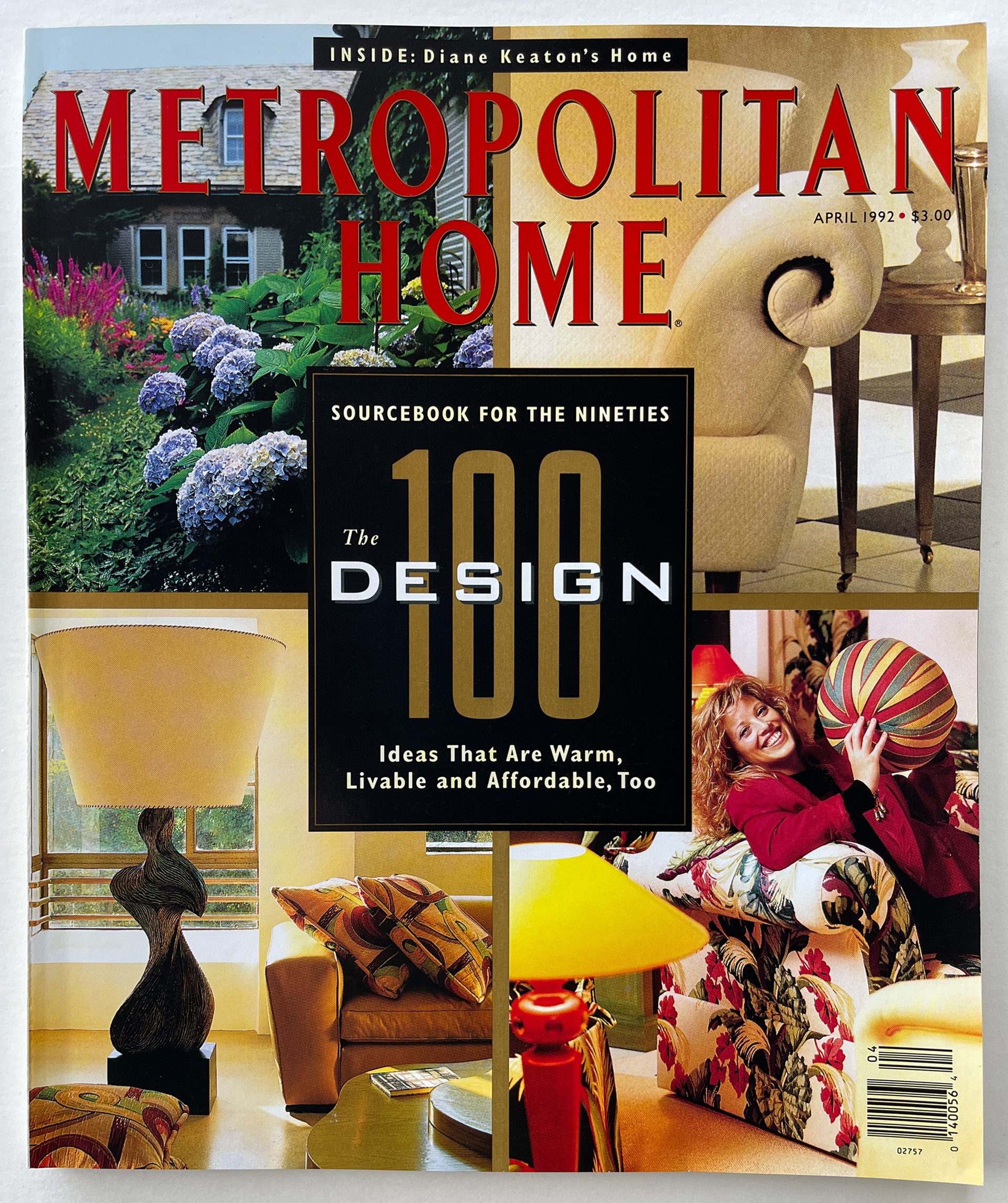

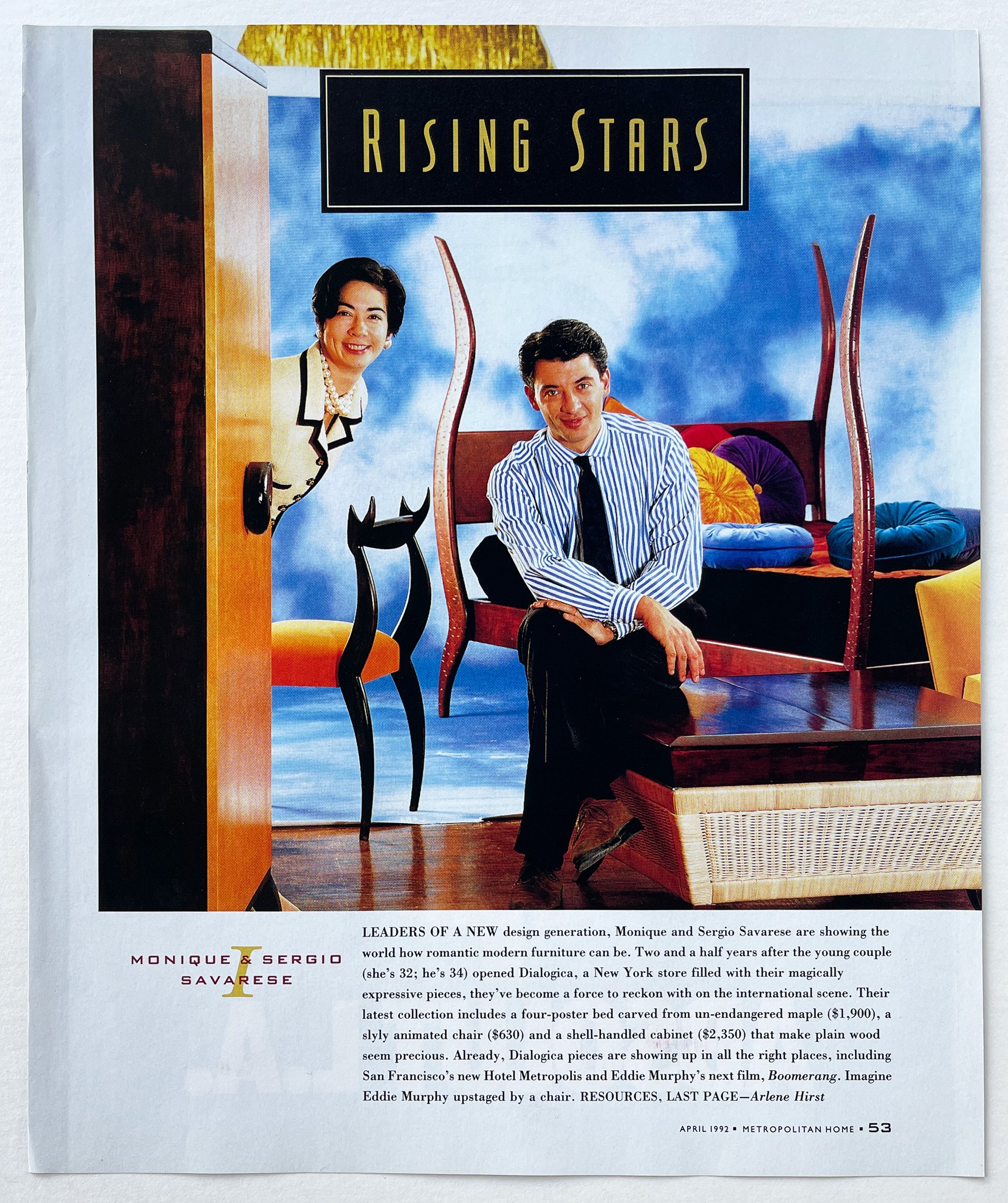

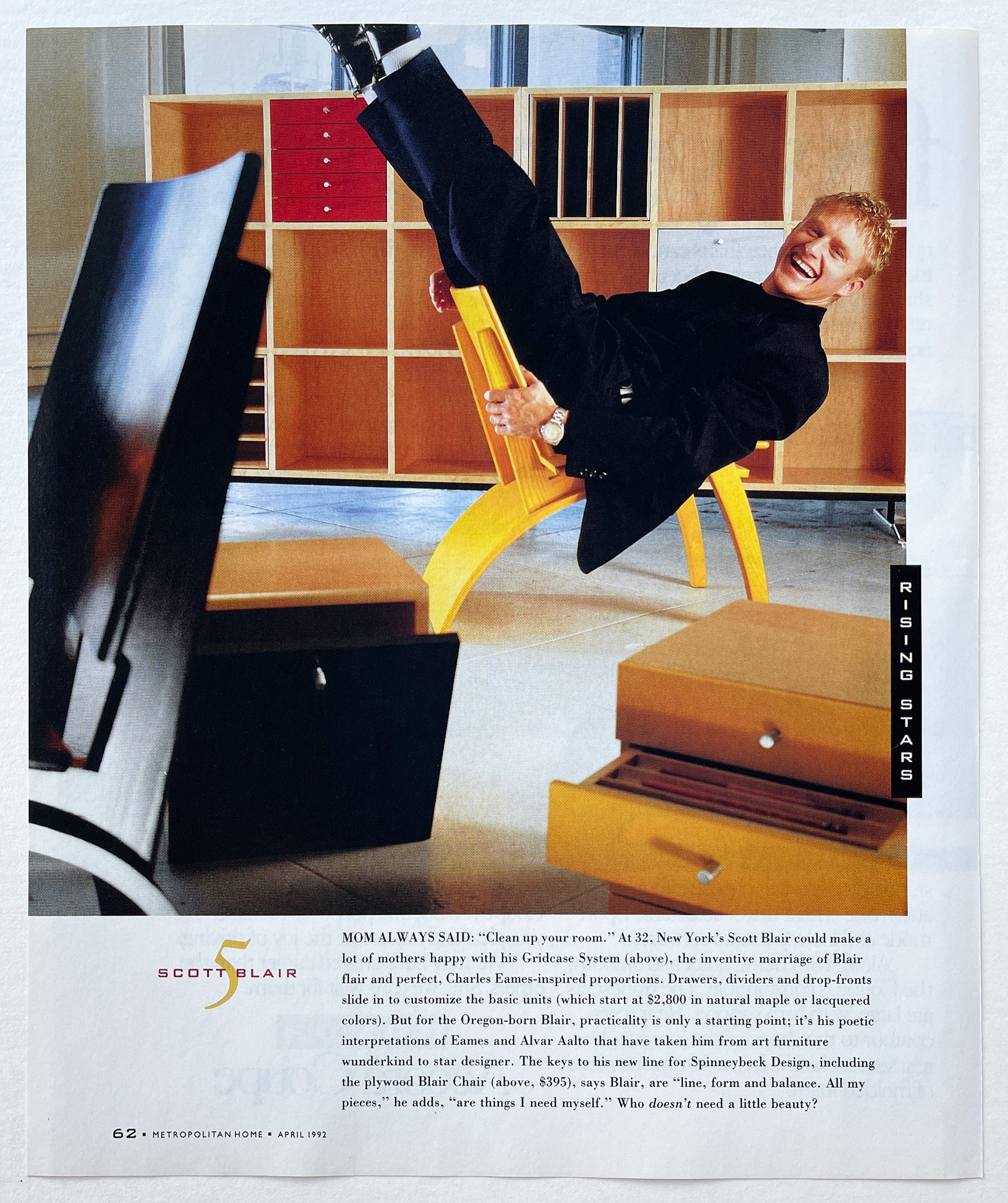
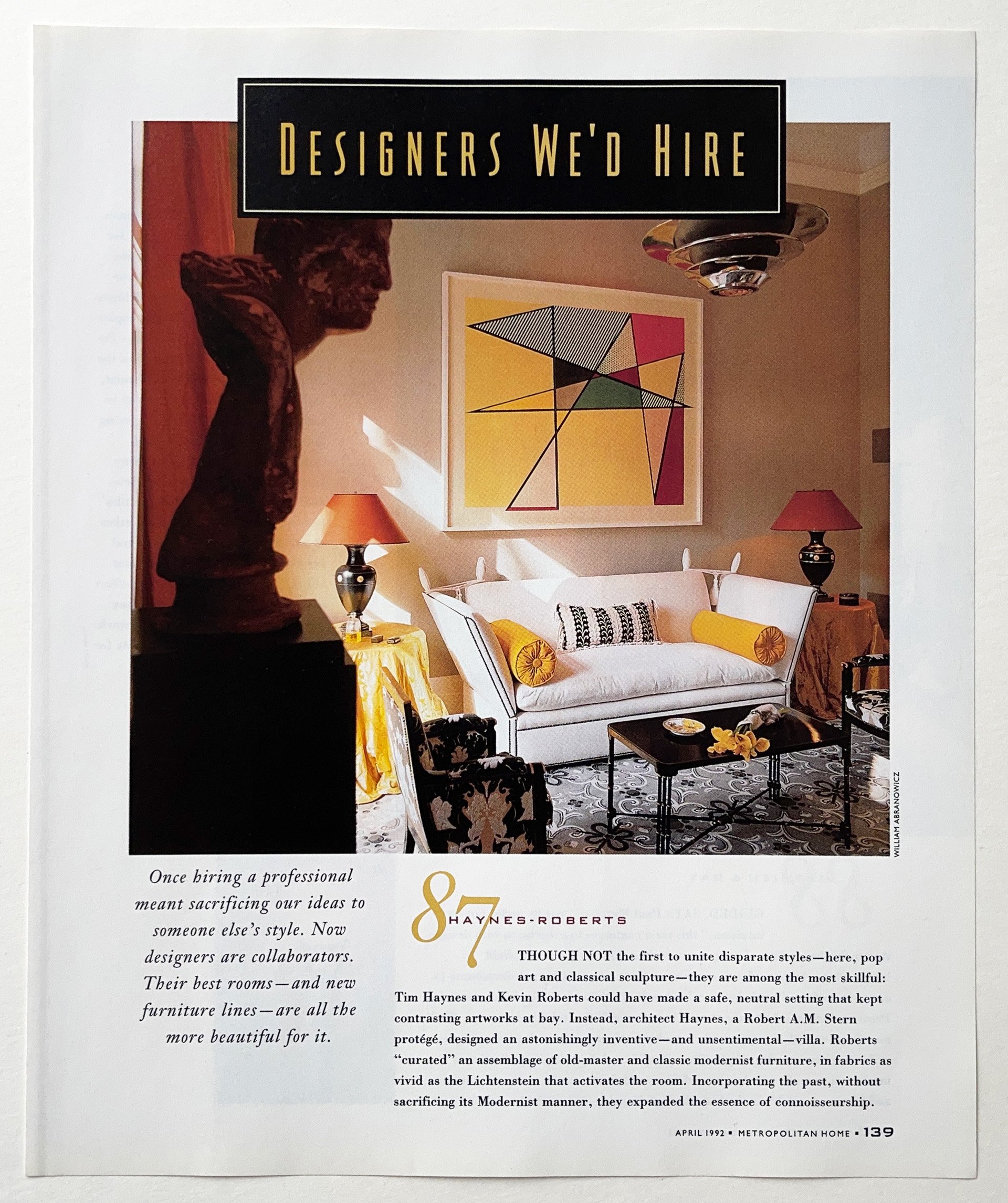


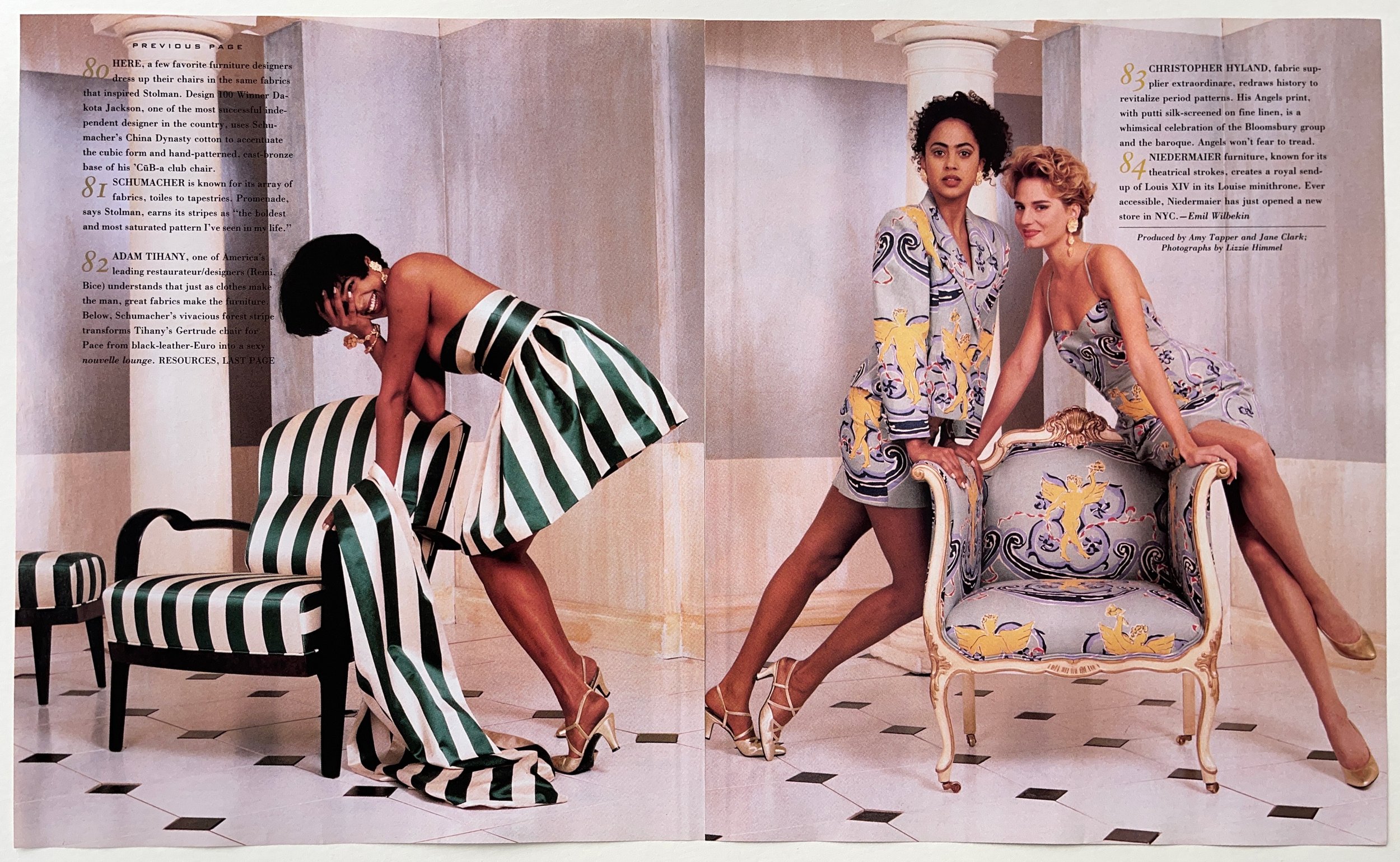
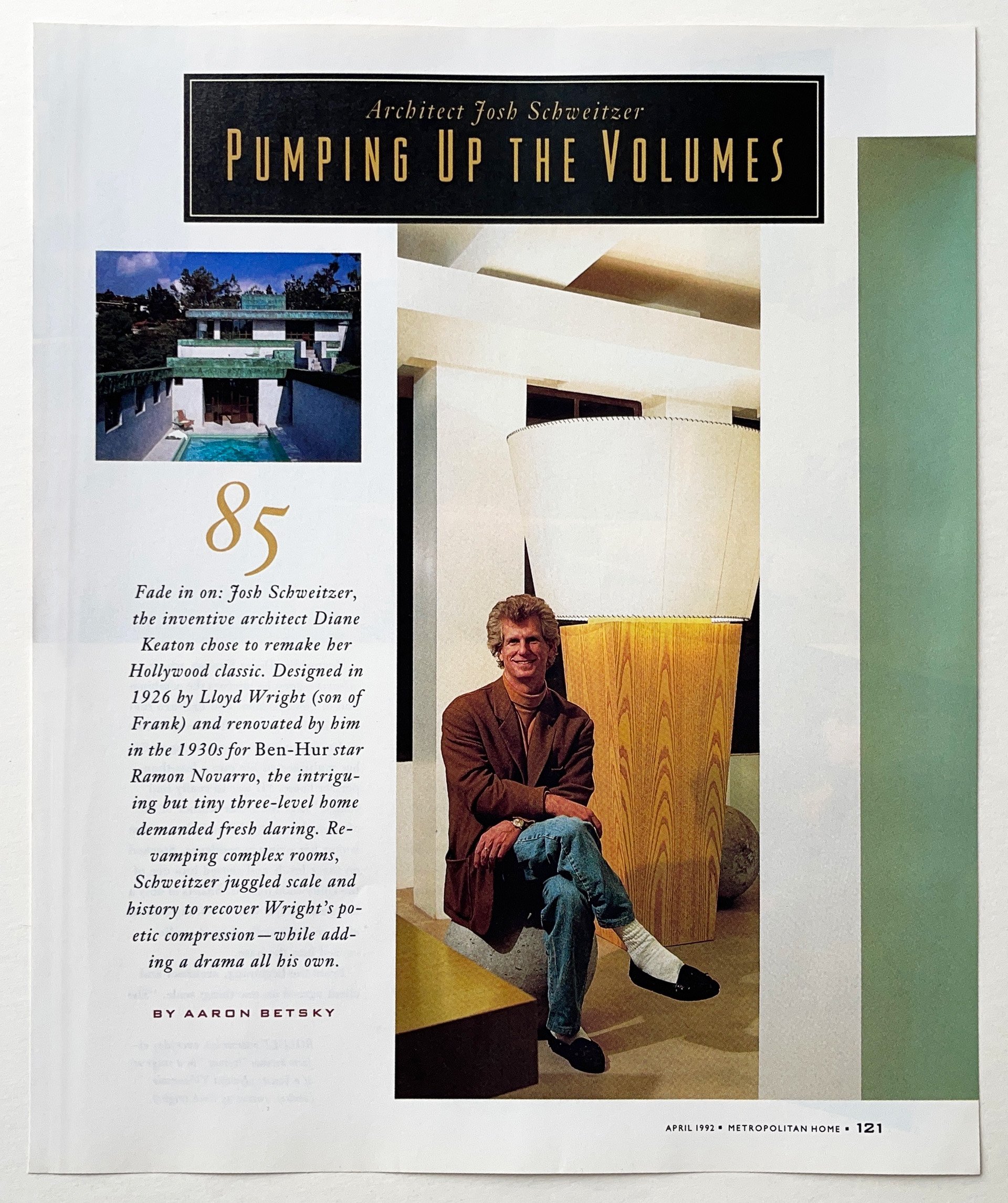
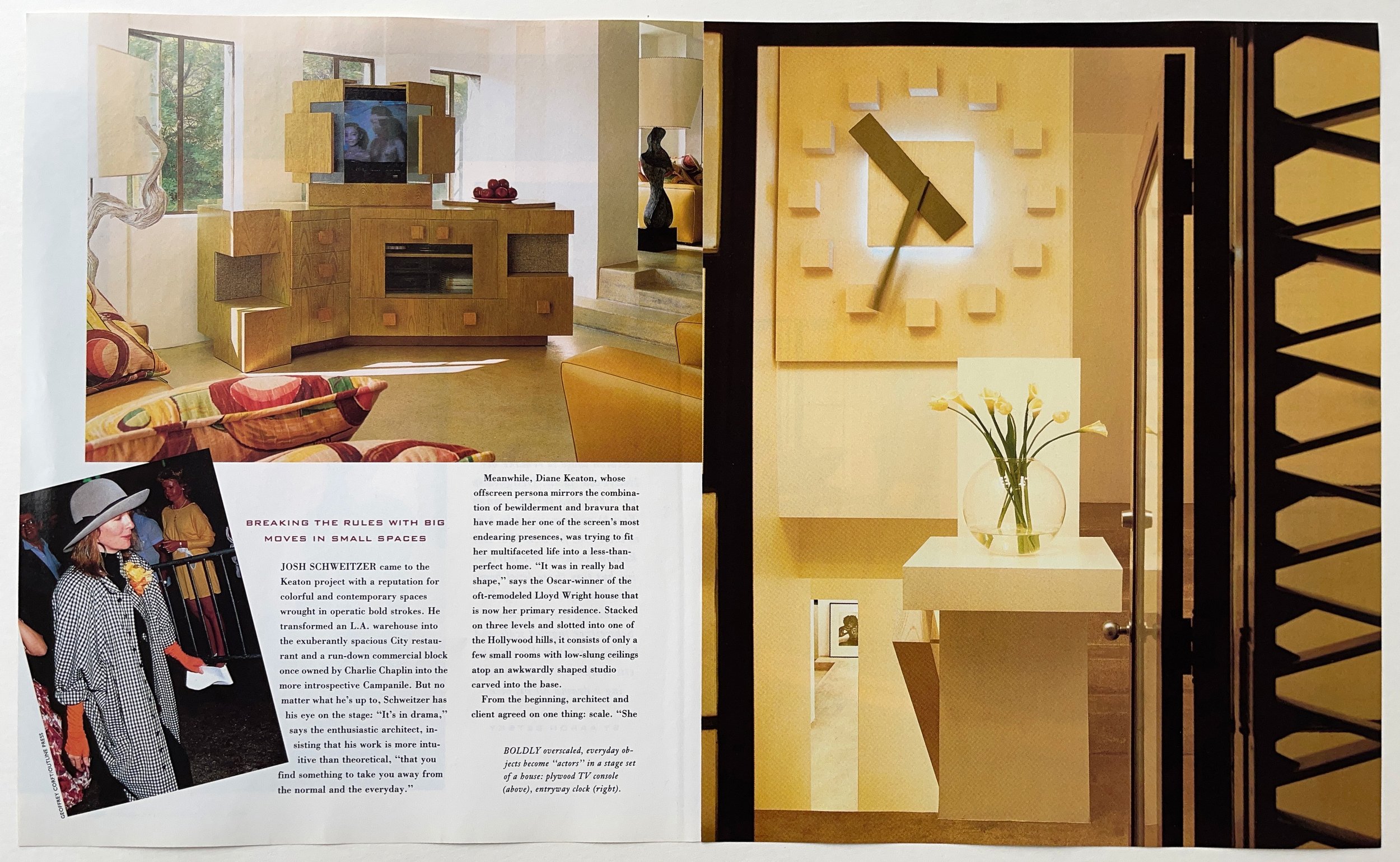
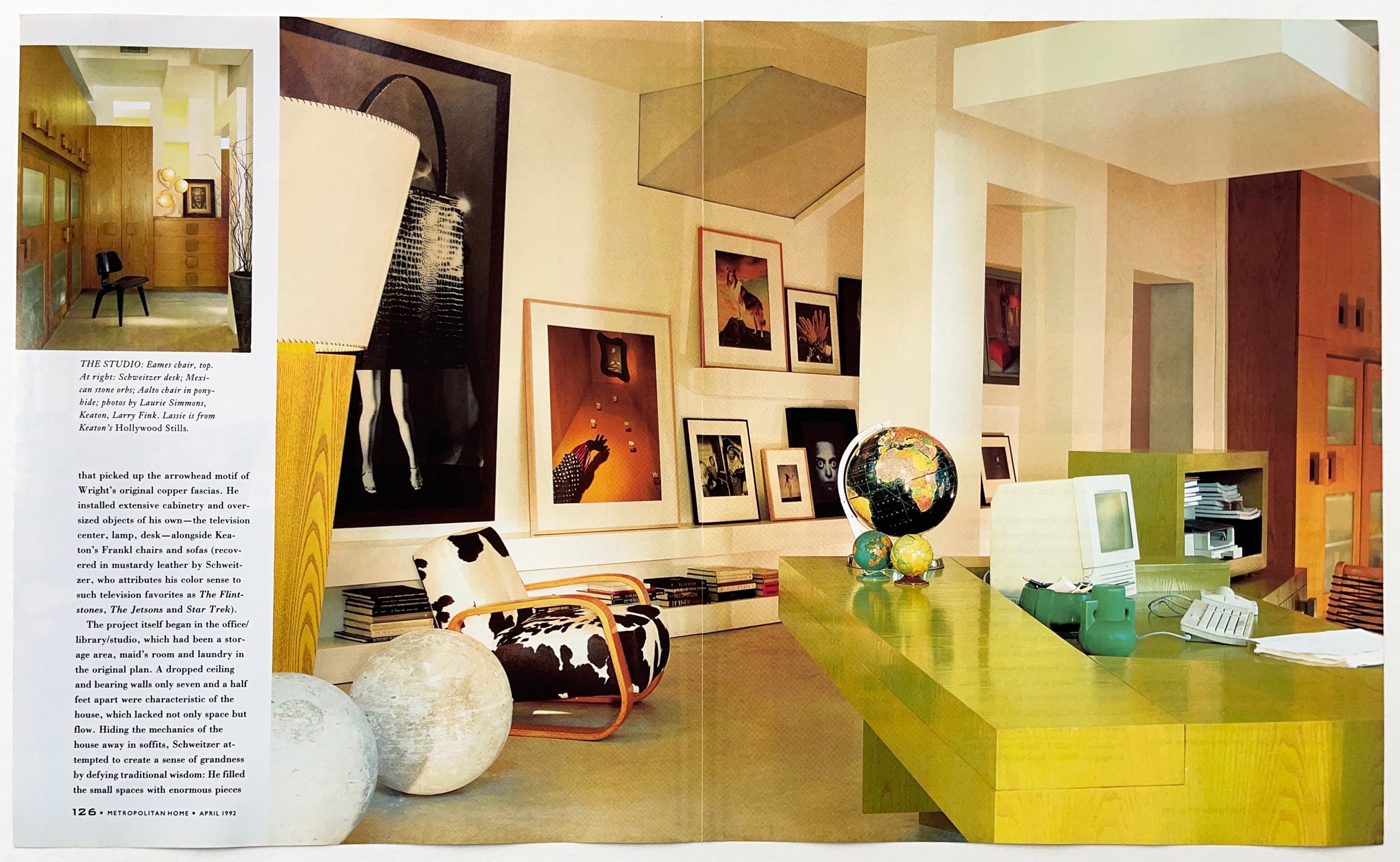
The Design 100 was an annual special issue that honored superlative invention and creativity in international design. The entire issue was designed as a one-off, with distinct typography, grid variations, color palette, and graphics. Art Director Kayo Der Sarkissian, whose incredible eye for detail and encyclopedic memory helped establish the rigor of the magazine’s evolving design.
George Gendron: Don, I want to go back to something we were talking about earlier, which is the transition you made from New York magazine to Met Home. And one question I should have asked back then, I’m really curious about, was, did you and Dorothy do a really dramatic redesign of the magazine all at one time, so that the look and the feel of the magazine, the typography, everything changed from one issue to the next? Or was this something that evolved over a period of time? Or a little of both?
Don Morris: I had to critique the magazine to get the job. And there were certain things that I saw as being sort of newspaper-like in their simplicity. And I’ve talked about how the verve of the subject and the sensibility of the subject could be more in the pages. And so from the beginning I was exploring that.
I was always, again, with that model of Esquire and developing a very strong relationship with the reader, I was interested in finding the right vessel for Met Home. For these voices that I was hearing in the halls that were telling stories. And I wanted to make a better, more in-step vessel to what it was I was hearing and what it is that we were reporting on.
And over time, I was there a while. I was there I think eight years, and I think we did three major redesigns. So we brought it to a place where I think we had a lot of tools that we felt were really perfect for what we were going to try to do. And we wanted to explore that.
We worked with grids a lot. We had sort of an elaborate set of tools. We drew our own type. But then there would be kind of constant evolution with the way that we would bring illustrators in, the kinds of photographers that we would invite. There was a lot of experimentation at that time with having people from different fields come in and bring that point of view to a new subject.
So we were inviting people that were not really in interiors to help portray the subjects of the magazine. We were shooting a lot more people, so we had great portraitists come in. There was a lot of evolution there, as the content sort of required.
George Gendron: Now we want to talk about something that was really, really striking about Met Home that had nothing to do with magazine making per se, but it was the unbelievably public support of the magazine for AIDS treatment, AIDS research at a time when there wasn’t even a vocabulary to describe what that was. During the later part of the ’80s, we would start to talk about social responsibility. We would start to talk about corporate social responsibility. But that language, that vocabulary, didn’t even exist then. So I’m curious about how that evolved. And I’m also really curious about what was the response of your owner?
Dorothy Kalins: That’s such a great story because here we were the “Lefty, Pinko, Radical” magazine of the Better Homes and Gardens company, which, by that time, had bought the Ladies Home Journal. So, I mean, they were just entrenched. My boss was the head of the magazine group at Meredith and they had dozens and dozens and dozens of magazines. And I was the one who would, you know, mess up the sandbox.
And we decided to do it because the people who we covered and our readers were getting sick. And it was very early on in this process. So early that when we actually decided to do a dinner and a gala to raise money, I called the director of the Museum of Natural History and they said, “Well, sorry. AIDS is not an approved disease. We can’t let you rent the hall.”
And I had a conversation with somebody at Canada Dry who said, “We don’t know how this disease is spread so we can’t support you because you might be able to do it by sharing cans.” Those are two examples of how resistant — the head of the magazine group at Meredith said, “This is so radical and this is so not in our wheelhouse.”
And here’s what was also important. Not only could Don and I work really closely together, we work really closely with our publisher. We happen to have a nutty, idiosyncratic, very effective publisher who was all for our doing something that would break through the sameness of our field.
The Met Home Show House & Gala AIDS Benefit
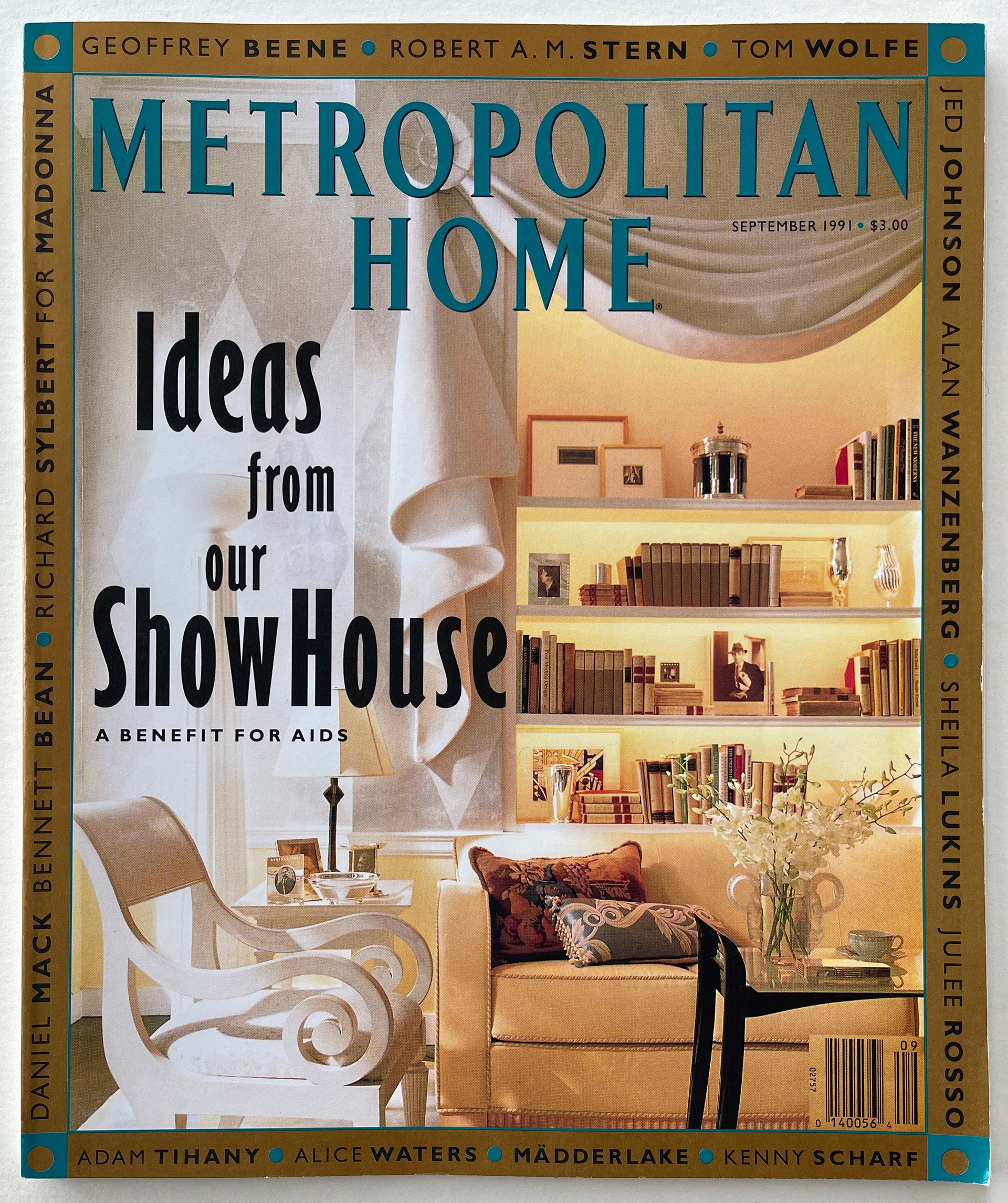

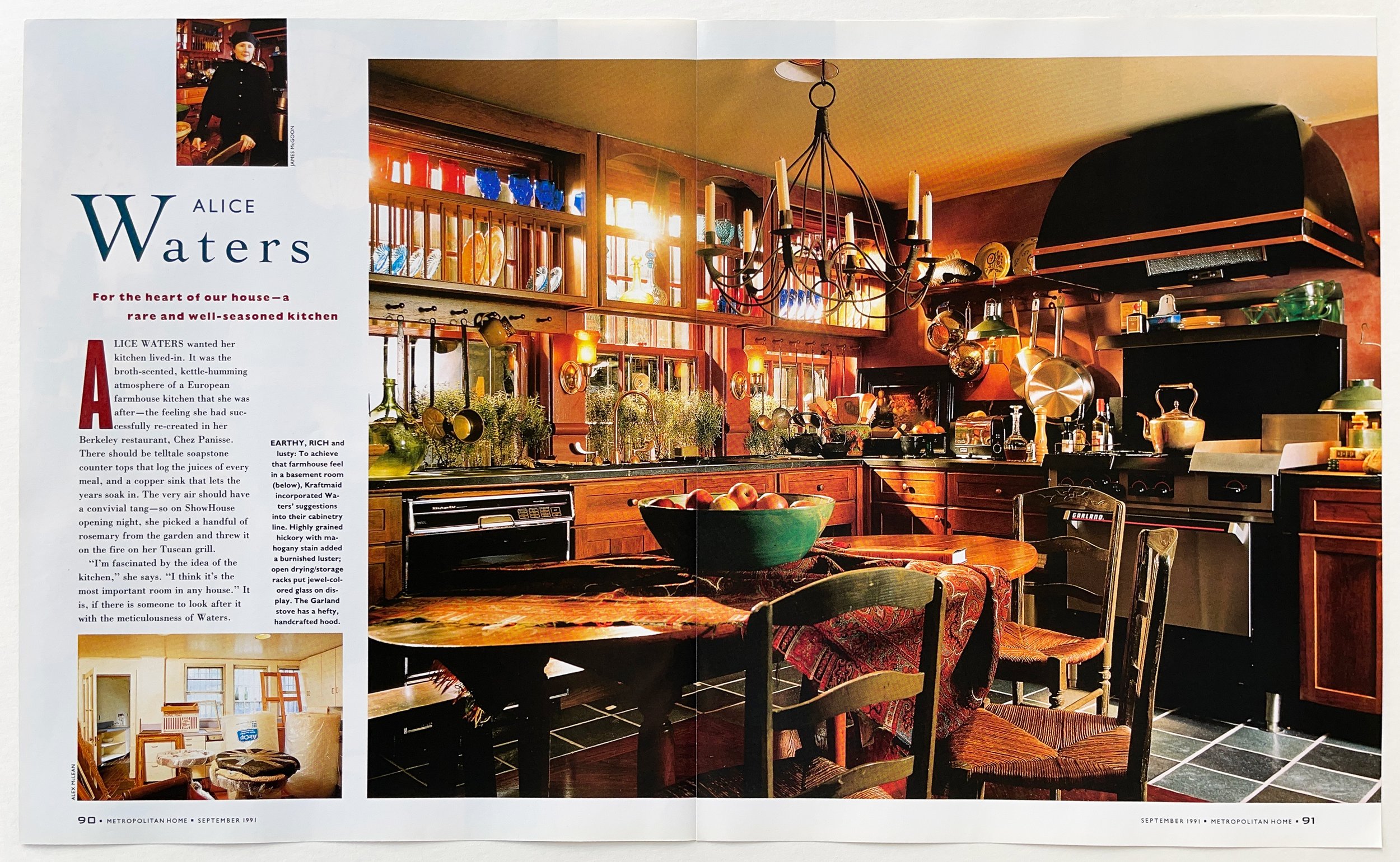

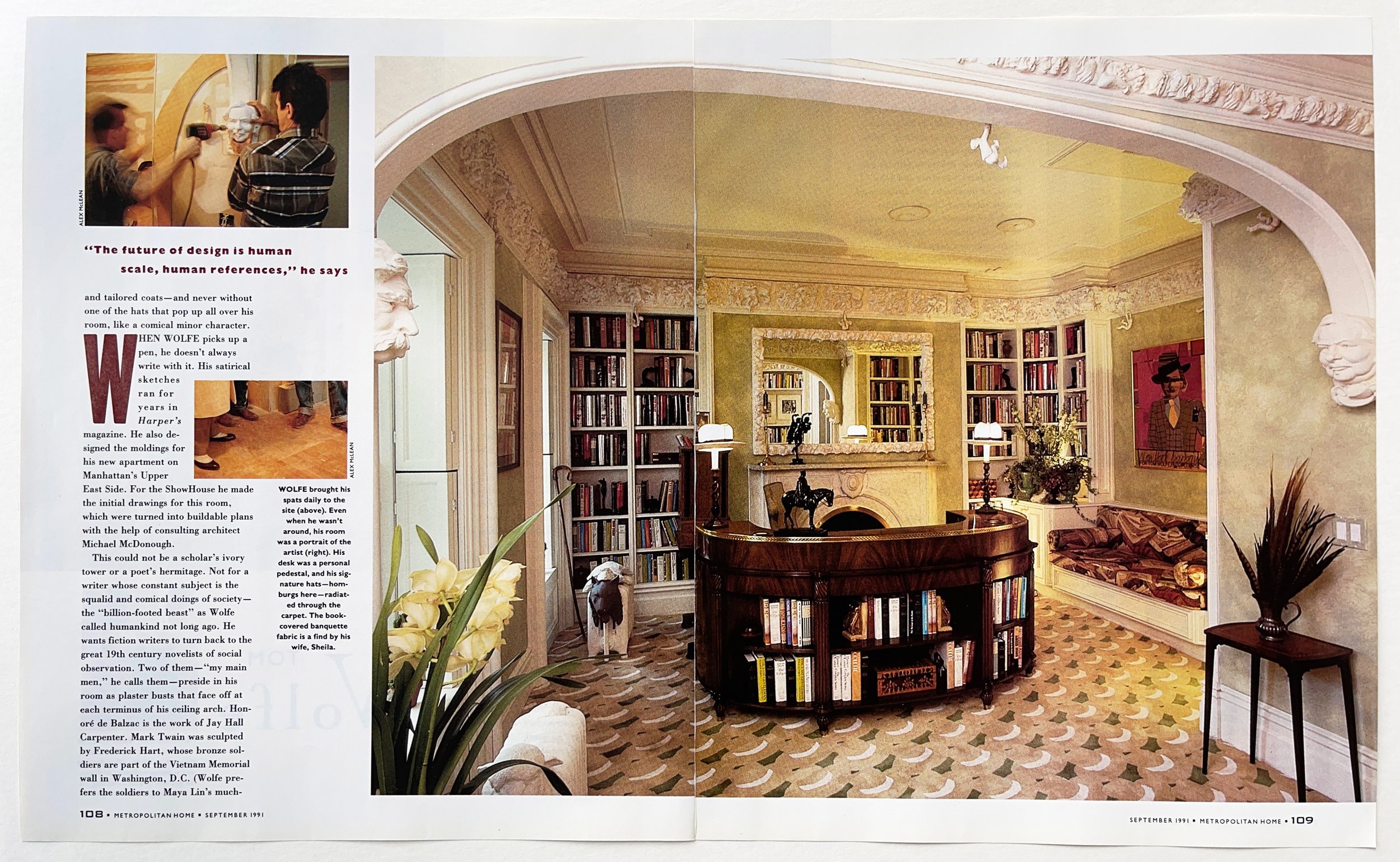

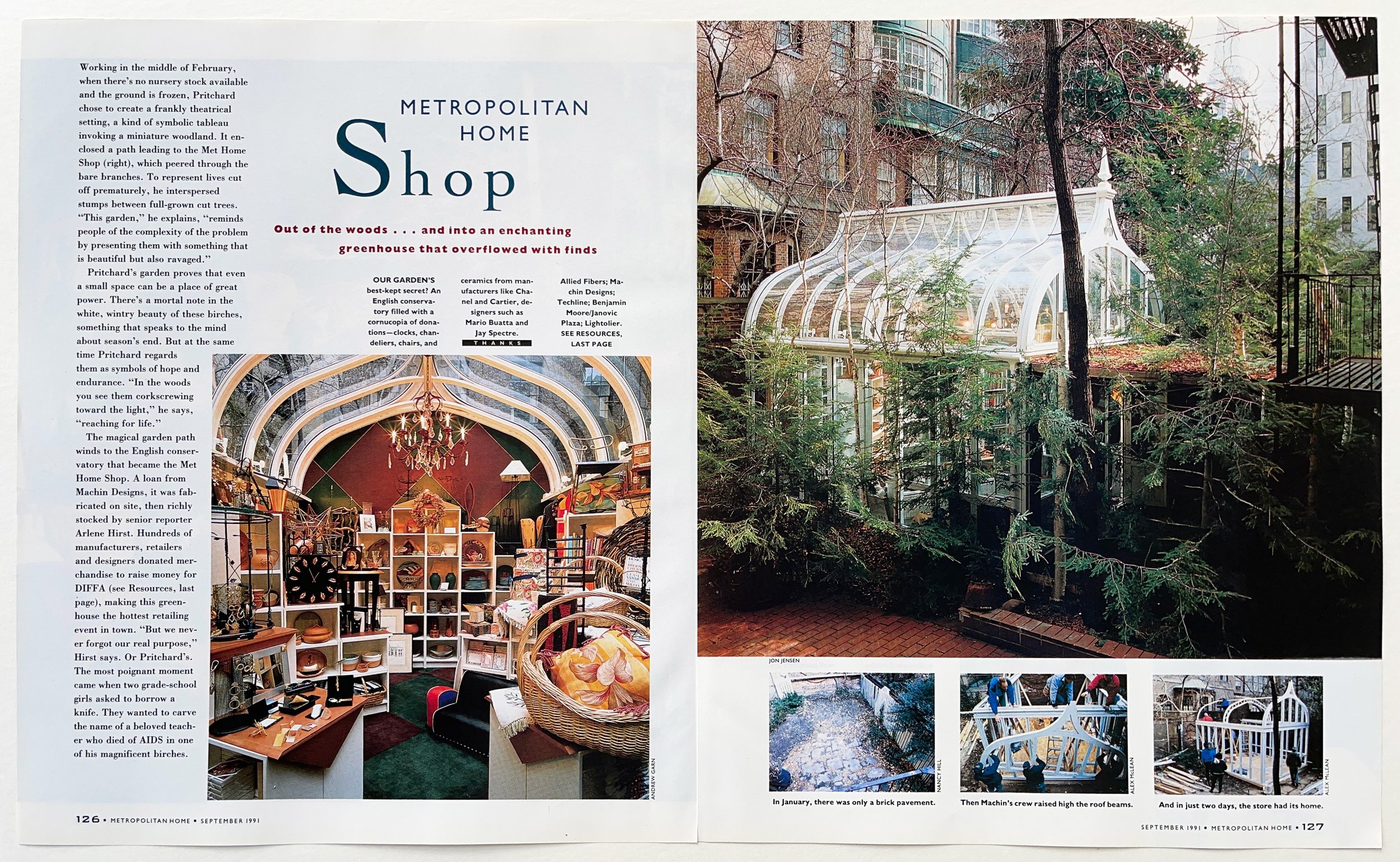
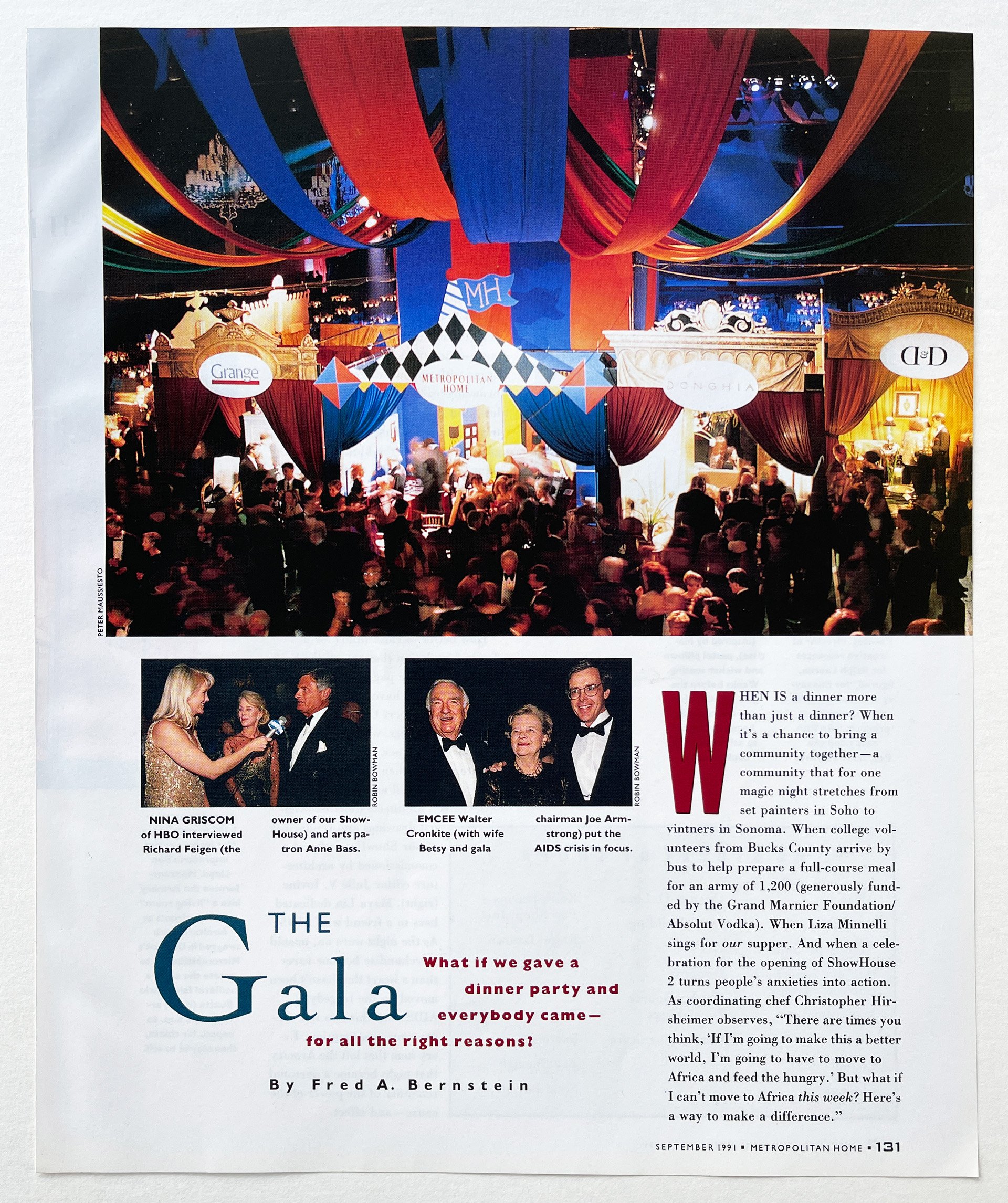
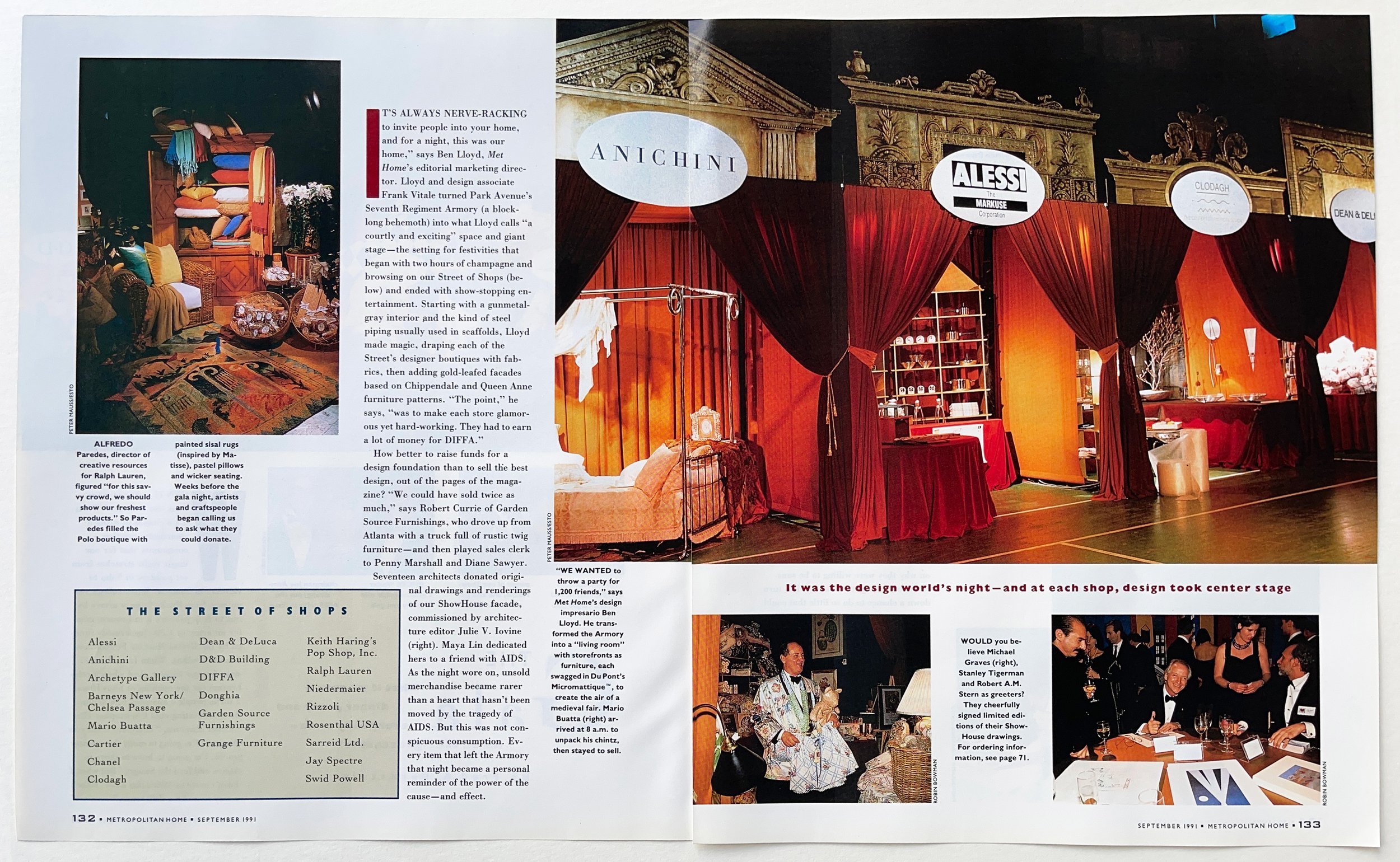
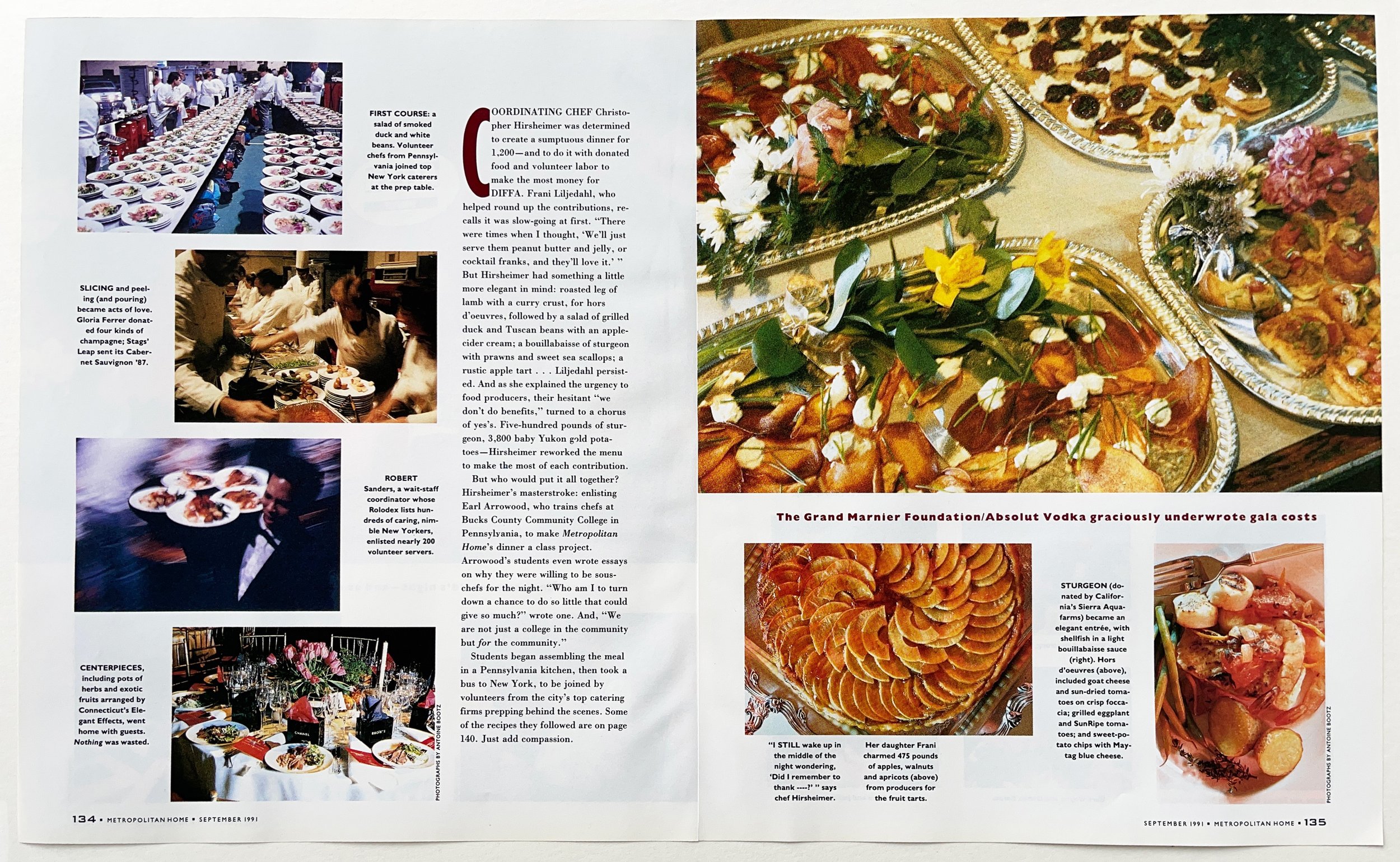

Morris: “The beauty of working for this magazine was that you’re surrounded by talented, caring people. Long hours were no problem if you were lucky enough to be a part of a strong team and believe in their mission. The Met Home staff rose to the AIDS epidemic by raising money and awareness via an ambitious showhouse/gala/magazine project in Manhattan. Our editors collaborated with the brightest architects, interior designers, artists, set designers, and landscape designers to create an eclectic, high-energy design experience in a Manhattan townhouse. Our staff curated a delightful shop with objects vetted by the magazine. We then staged an elaborate gala—orchestrating the event’s design, delicious food by enlisting top chefs, and first-class entertainment. This culminated into a richly detailed special issue that challenged the status quo and raised substantial money and awareness for DIFFA (Design Industries Foundation For AIDS).”
“We were so terrified because this was the early stages of AIDS and we saw it happen among the gay population that were the designers and our readers who were so important to us.”
So when I went to the head of the magazine group and said, “We want to do a special issue, we want to do a showhouse, inviting, not just interior designers, but set designers, and architects, and chefs to do rooms. And we want to have a gala, and we want to invite 1200 people, and have a shop where people can contribute what they made, their lamps, their objects, their whatever. So people, we could raise money that way.”
He said to me, “This is an idea that is doomed to fail. But if you are right, I will eat my words.” And in fact, he did. He wrote on a piece of paper six months later, when it was done, and he put it in his mouth, and chewed it, and swallowed it.
So, not only was it early in the AIDS world, it was something that magazines just didn’t do. You know, you were lucky to get your issues sold, and be able to sell enough copies on the newsstand, and get your paper and printing prices down. And that was the economics of being in the magazine business. But we just felt that we had to do it.
And we kept going back to our same well of people. I remember a young editor [Newell Turner] who came from the magazine program at Ole Miss. He was in graduate school at Ole Miss in journalism. And I was giving a speech down there and I came back and it turned out that one of our assistants had left, and I called up and I said, “Listen, if you really want to come to New York and you want to do this...” And the next year he wound up designing the lady’s room of the Park Avenue Armory so that it could be a place that people would be able to go during the gala. He ultimately went on to become editor of House Beautiful, interestingly, at Hearst.
But everybody was into it together because it was bigger than all of us. And we just, we were terrified. But we went for it.
Don Morris: Yeah, the entire staff was involved.
Dorothy Kalins: Absolutely. The entire staff.
George Gendron: As you’re talking, I’m thinking I could imagine many magazines getting together and thinking, “Well maybe we should donate a page of public service advertising for the cause.” So my response is, Dorothy, I think you had to think bigger at the time. That was huge.
Dorothy Kalins: You had to be a little bit nuts. But we were so terrified, George. Really, we were terrified because this was the early stages of AIDS and we saw it happen among the gay population that were the designers and our readers who were important to us. And it was just, we were very close to it, very early on.
George Gendron: I remember that period vividly. The first person I knew who had actually died of AIDS was my IP attorney up here in Boston — who was also Julia Childs’ — a brilliant, wonderful man, and I was having lunch with him, and he seemed to have a cold. And he had just come back from South America and he said, “Yeah, I picked up a virus down there.” And six months later he was dead. And this chill went through the community up here, when suddenly the gravity of this dawned on people. And yet it took ages and ages. So that was courageous and thrilling what you guys managed to pull off. That became a huge deal in New York.
Dorothy Kalins: It was a huge deal. It was terrifying every single step of the way. I won’t pretend that it wasn’t, because it was totally unplowed territory. But that’s where having a group of people around you who always encourage each other to go for it.
And that’s what I just feel like people who are working remotely and who are not seeing each other every day and who are away. You know, it’s very hard to generate that kind of feeling, both for the work that you do and the larger things that you tackle. It’s very difficult to do.
For the Design Preview ’90 issue, art director Richard Ferretti and Morris conceived of two related fonts. With no time to hire a typographer, the multi-talented Ferretti drew each character and then cut-and-pasted every title together for this special issue.
George Gendron: Okay, guys, now it’s time for our Print Is Dead Billion-Dollar Question. And you can answer this individually or collectively, and that is that the two of you are invited to lunch with Laurene Powell Jobs, and she confesses to you that she has always been a print magazine junkie and that she adored Metropolitan Home — although she was very young at the time. And she says to you, “I’d like to fund any magazine idea you would like to launch today. No budget. But I’d like to do my little bit to bring print magazines back to life again.” What would you guys do?
Don Morris: I think it would be something that doesn’t exist only in print. I think you would have to embrace the sort of multi-channel nature of the way that people like to receive things. So I think, you'd, you know, come up with a whole strategy that kind of gets a wide enough audience to matter. Subject-wise…?
Dorothy Kalins: See, I think it’s passed. I do. I think it’s an art form that lived in its time. And I fought it till the very end, but I, I just I wouldn’t launch a print publication right now.
George Gendron: Because it’s not financially viable? Keep in mind, Laurene doesn’t care about that.
Dorothy Kalins: It’s not that. It’s more that how can you be the only important voice in anything anymore? I mean, my last magazine job was the executive editor of Newsweek. And I remember running into Michael Wolff in the park. The writer Michael Wolff, who went on to write three books about Trump in his first three years. And he said, “I’ll bet you $10 million that Newsweek is not around in five years.” And I said, “Oh, Michael, don’t be ridiculous!”
I don’t know. I just believe that we were so lucky to have had the years with magazines that we had. You know, we love doing the books that we do and those are great. I would say, “Go spend it on the children at the border and make sure they have some kind of life, Laurene.” That’s what I would have her do with her money.
George Gendron: Well, I’m going to sound really callous now, because I was about to say that when you get the call from Laurene, say to her, you’ll get back to her, and Pat and I will come up with a bunch of ideas for the two of you that we would love to see you create.
Don Morris: Well, if I picked up the receiver, I think that what I would say is [we should make] a magazine that takes away a lot of the colored opinion to subjects and brings back what journalism is. Because I think that what people don’t really understand, and would be quite relevant, and probably quite fresh, is a magazine, or a news entity, that was really fresh, that showed multiple points of views to a subject, that gave people information and let them choose or let them disseminate.
But really, like the early days of television, where if you had a certain amount of news that was required for you to be able to broadcast, you had to show opposing views. You had to show a couple of views. And I think anything that we could produce now that put different points of view in one place for people to digest and get a little bit more of a balance that they then had to come away and make their own opinion about, would be incredibly useful. You know, to just do something to crack the siloed nature of all these conversations.
The collaboration that Morris and Kalins began in 1985 remains fruitfully intact to this day. After Met Home was sold to Hachette in 1992, the duo pursued their own paths. Morris launched his eponymous design studio, where he continues to do editorial work with clients including Entertainment Weekly, The Wall Street Journal, and Bloomberg, and expanding into branding and books. In 1993, Kalins became partner and editor-in-chief of Meigher Communications, where she launched Saveur and Garden Design. Between them, they’ve been the recipient of gobs of awards, including multiple National Magazine Awards. In 2018, Kalins was elected to the ASME Magazine Editors’ Hall of Fame. Over the last several years, Kalins (now Dorothy Kalins Ink) and Morris have collaborated on several successful book projects (see above), and continue to do so.






